Members’ Finds, Autumn 2020
This page, now closed, was set up experimentally in September in place of our fungi walks as a platform to share members' photos of local fungi. Starting off in a modest way, it soon gathered momentum and by October we were being inundated with records from all over the county supplied by good numbers of members (see the list of contributors / photographers below), culminating by the end of December with a list of over 500 different species, many with excellent photos showing feature details often not covered in available handbooks. Autumn fruiting this year was exceptional, resulting in over 30 new species for the county list, two of which are now proven with DNA sequencing to be new to the UK with several more awaiting sequencing which may add to that number.
Penny would like to thank all members who have made such a valuable contribution. She would also like to thank our webmaster Peter Davis, without whom this project would not have been possible.
•  Only entries marked with this symbol have been microscopically examined. There is no guarantee on identifications made of entries lacking this symbol though all photos are checked and selected by Penny to the best of her ability. Basic accompanying notes are also Penny's.
Only entries marked with this symbol have been microscopically examined. There is no guarantee on identifications made of entries lacking this symbol though all photos are checked and selected by Penny to the best of her ability. Basic accompanying notes are also Penny's.
•  Entries marked with this symbol have been confirmed or identified using DNA sequencing.
Entries marked with this symbol have been confirmed or identified using DNA sequencing.
A particular species can be located from either the Latin or English list of names where the corresponding date(s) are given with each species. (The Latin list is considerably longer as many of the species do not have an English equivalent.) Then return and scroll down the photos manually to locate the required date and species.
Click here for LATIN ALPHABETICAL LIST Click here for ENGLISH ALPHABETICAL LIST
For the LATIN MASTERLIST of Members' Finds since its inception click Masterlist.pdf Masterlist.xls
Click on thumbnail to see full size
Click here to see stunning images of Slime Moulds by Barry Webb
Contributors / Photographers: Bolton, Margaret; Catterson, John; Cullington, Paul & Penny; Davis, Peter; Dodsworth, Martin & Joanna; Douglas, Greg; Ebdon, Sarah; Ewan, Jackie; Ferguson, Gill; Fortey, Richard; Goby, Paul; Gudge, Juliet; Harrison, Tim; Hatch, Michael; Hiorns, Rebecca; Kibby, Geoffrey; Knight, Tony; Launder, Jesper; Marshall, Tony; McDade, Audrey; McKenzie Dodds, Jackie; Ness, Russell; Padmore, Andrew; Peace, Alison; Peace, Emily; Schafer, Derek; Soler, Claudi; Simpson, Bob; Standing, Nick and Toni; Tortelli, Mario; Warhurst, Justin; Webb, Barry; Williams, Claire.
Entries with a green background indicate rare sightings (87) |
Entries with a yellow background indicate species new to Britain (4)
|
December 30th 2020
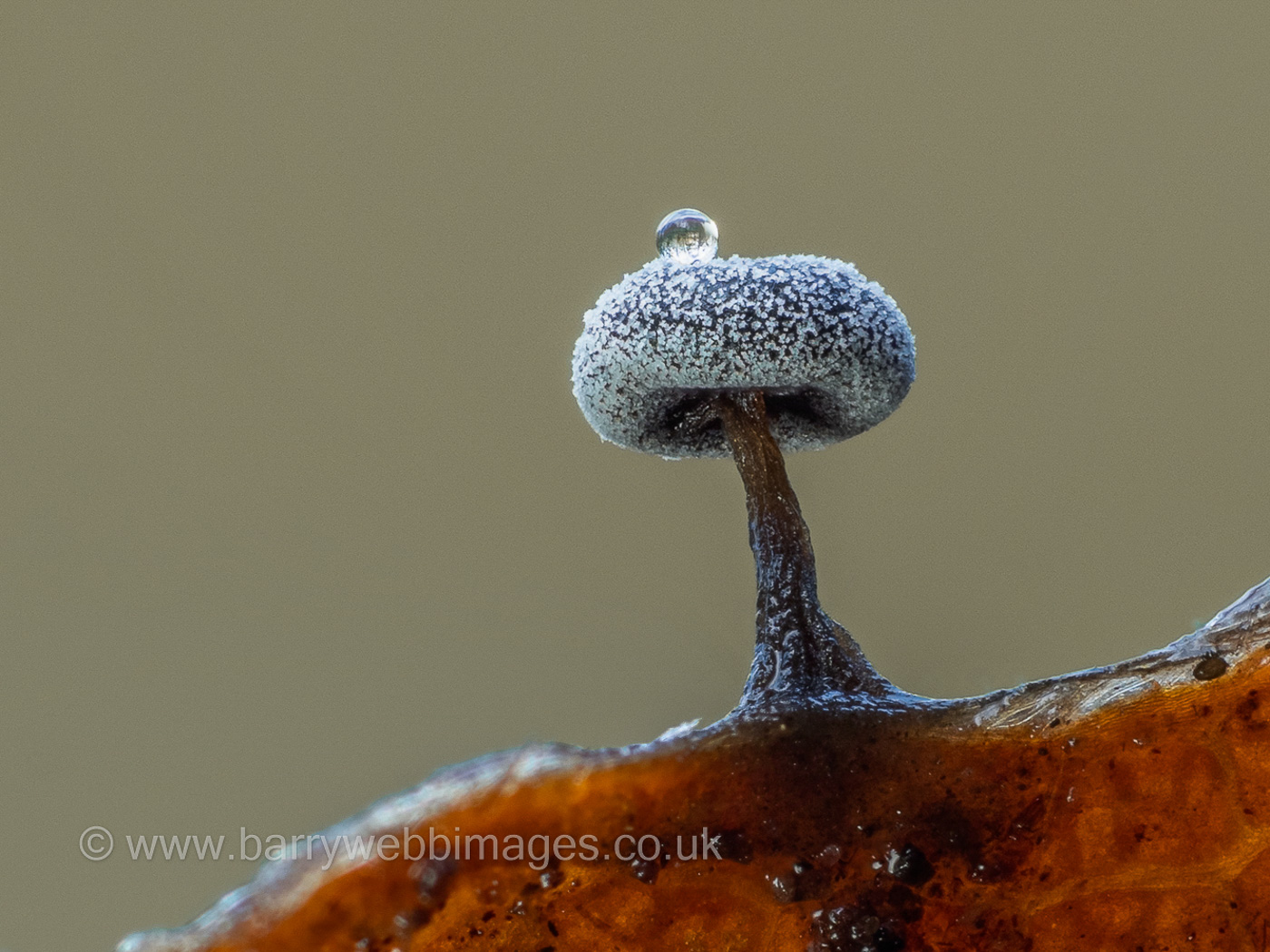 |
December 30th Didymium clavus (a slime mould with no common name)
Barry Webb found this tiny specimen in deciduous leaf litter in Burnham Beeches. It is new to the site and also to the county, and the determination was confirmed by Edvin Johannesen from Barry's photo. Compare with photos of other Didymium species on finds 2020 to see the typical features of the genus.
|
December 28th 2020
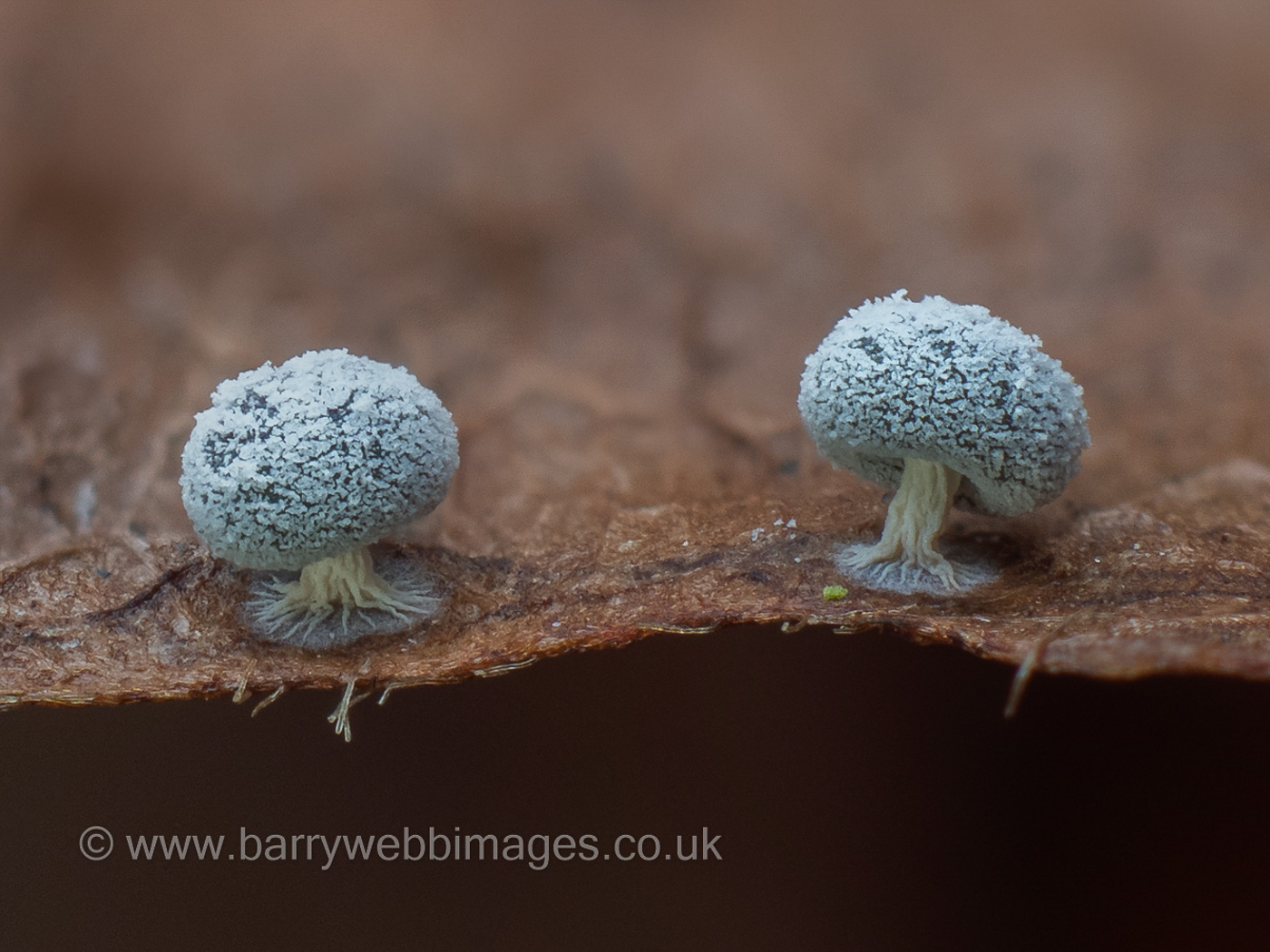 |
December 28th Didymium squamulosum (a slime mould with no common name)
Barry Webb found this beautiful slime mould in deciduous leaf litter in Burnham Beeches. This is one of the commonest species of Didymium and we have plenty of county records though apparently only one previously for this site back in 1923! Compare with photos of other Didymium species on finds 2020 to see the typical features of the genus.
|
December 27th 2020
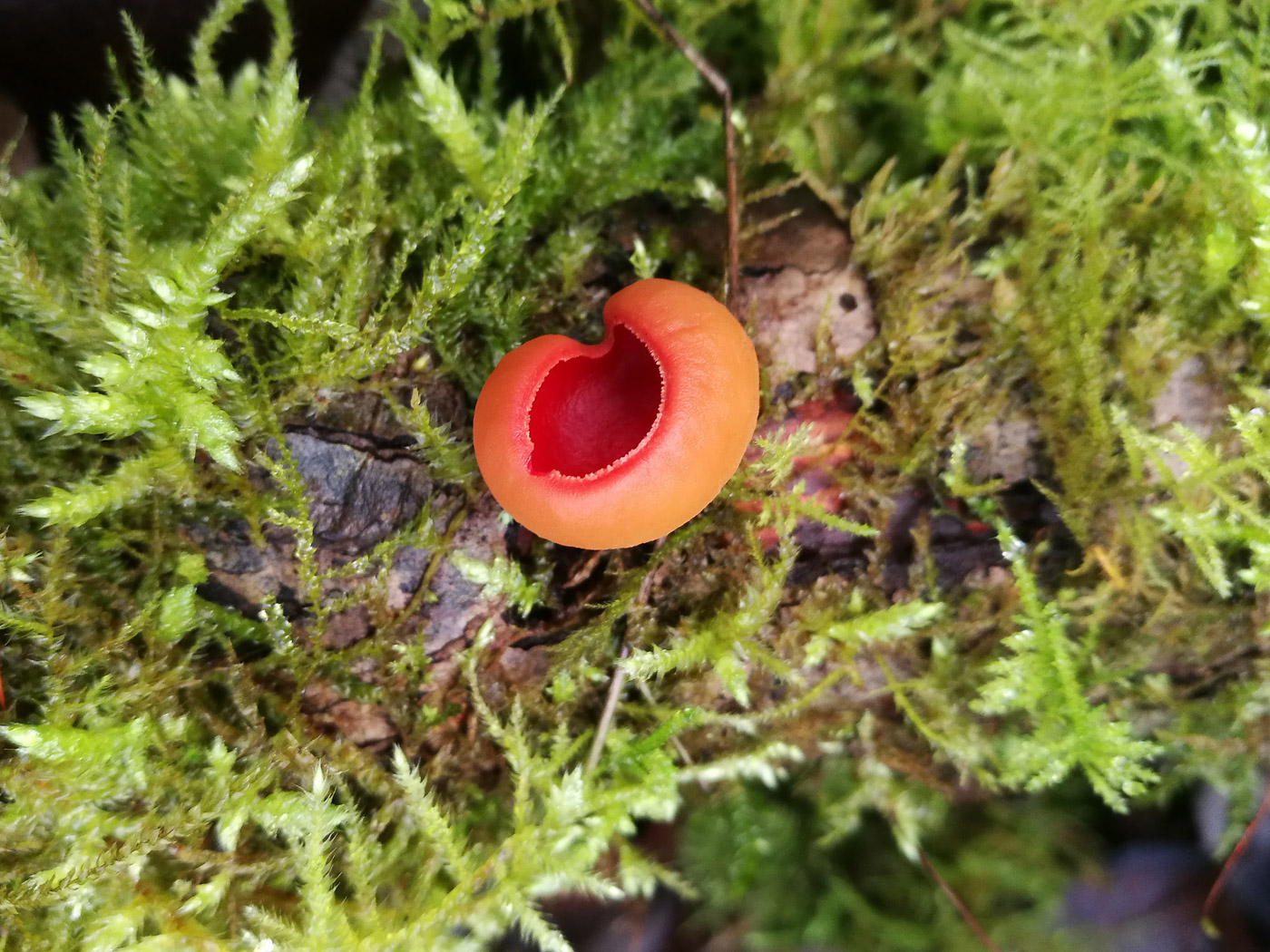 |
December 27th Sarcoscypha austriaca (Scarlet Elfcup)
At Dancersend BBOWT Reserve Michael Hatch found an early fruiting specimen of this beautiful and eye-catching species - one that is always a thrill to find. Clearly a cup fungus, this is actually unrelated to the very similar genus Peziza and favours damp woodland sites, most often found on fallen rotting and partly submerged mossy branches of Willow or Maple, though it can occur on other deciduous wood if suitably soggy. It is a Spring fruiting species and is well worth looking out for any time from now till April or sometimes even into May.
|
December 24th 2020
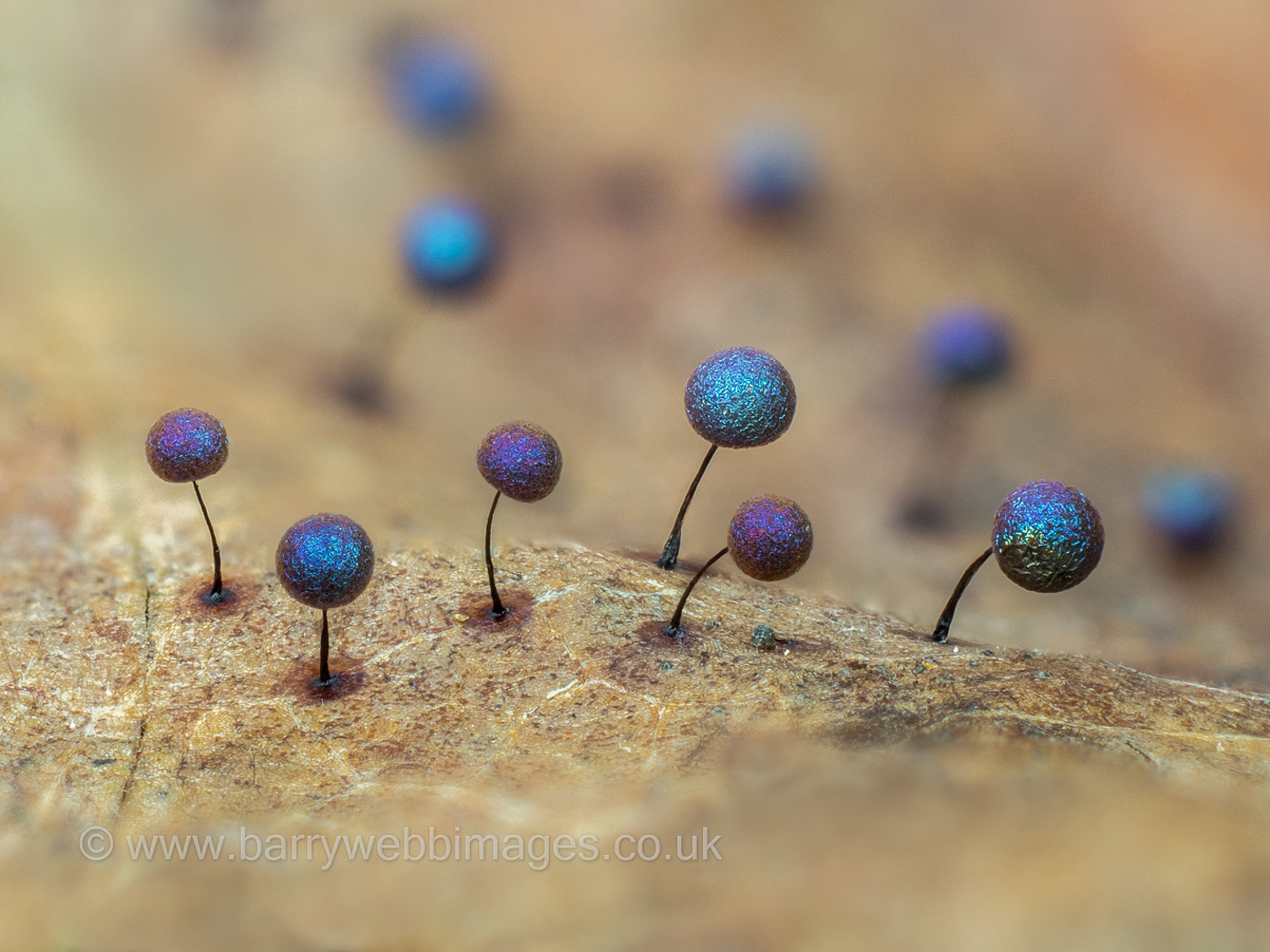 |
December 24th Lamproderma scintillans (a slime mould with no common name)
Barry Webb found these glistening little beauties (only 1-2 mm high) in Burnham Beeches in deciduous leaf litter. This species is not only new to the site but also to the county and the determination was confirmed by Andy Sands from Barry's excellent photo. The iridescent colours are typical of the genus, all species of which are very small thus often missed and presumably under-recorded also.
|
December 23rd 2020
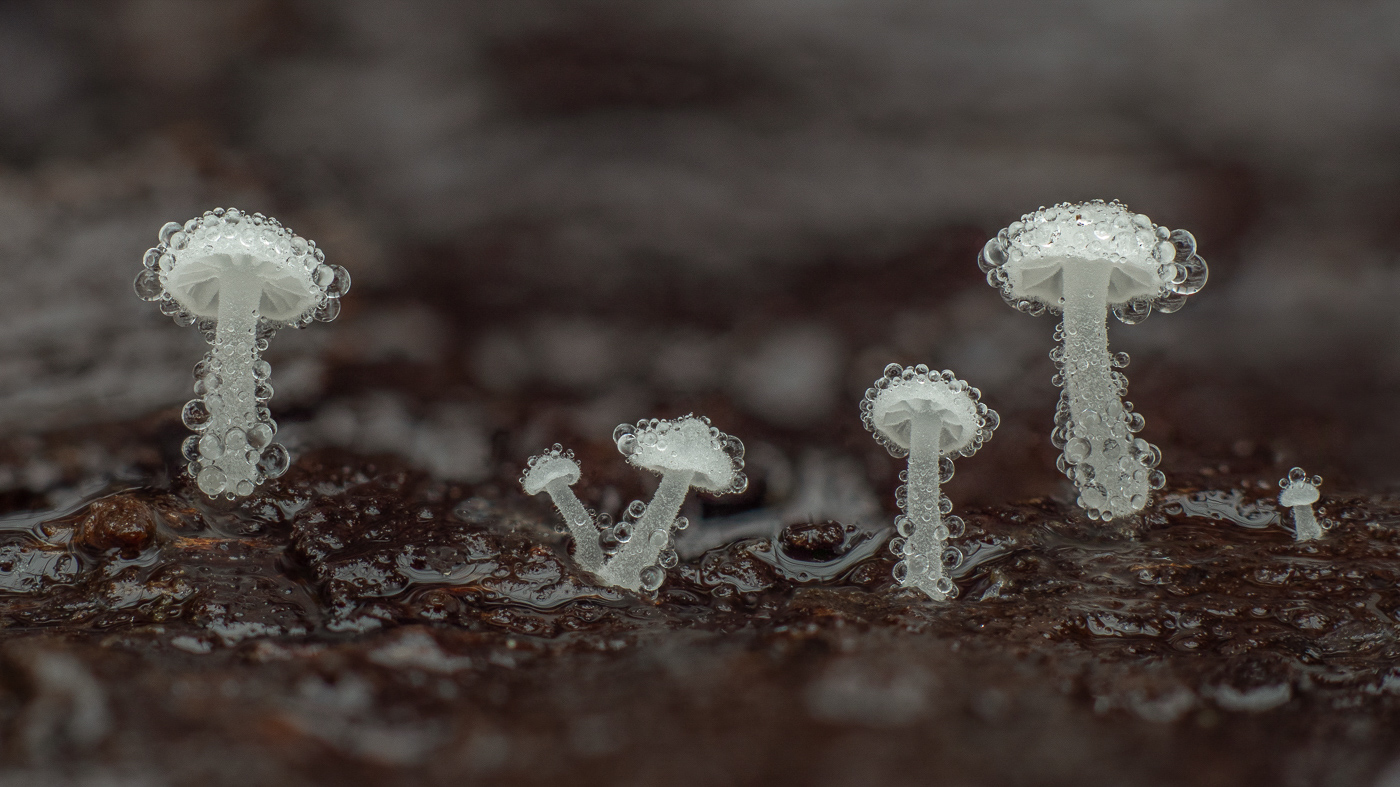
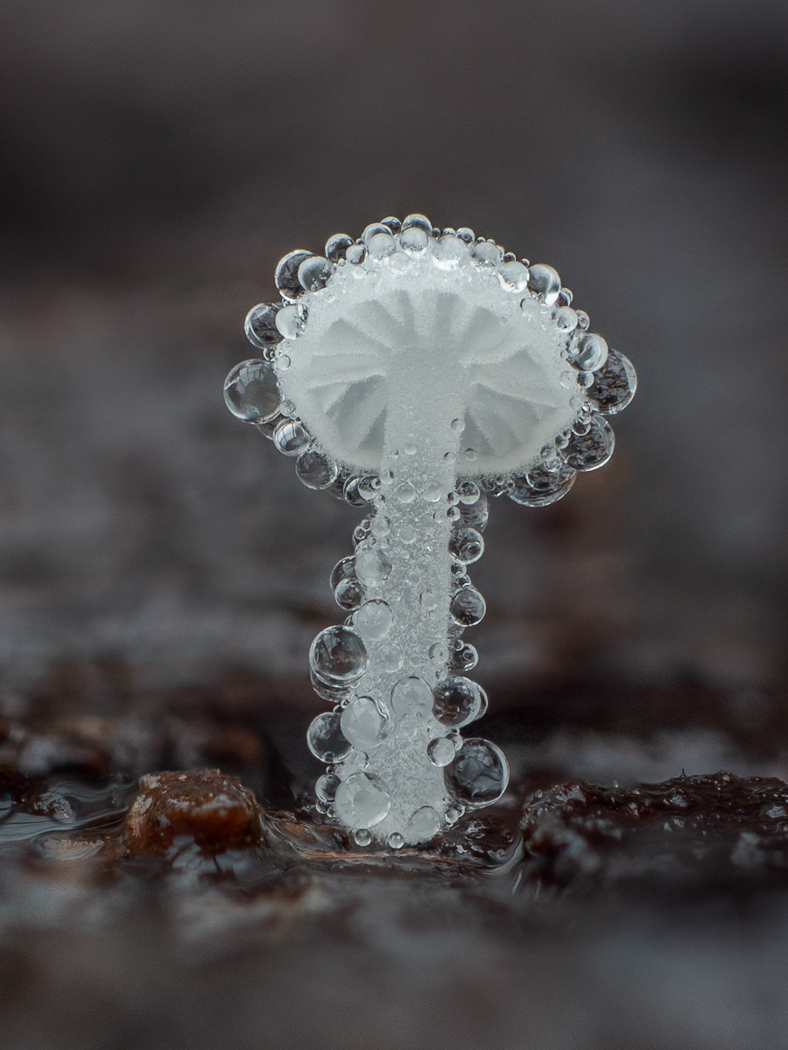 |
December 23rd Hemimycena tortuosa (Dewdrop bonnet)
Barry Webb took these beautiful photos of a tiny little Mycenoid mushroom he found on an old Apple branch he keeps in his greenhouse in case interesting things come up on it! Derek and Penny have made this identification just from the photo, so it is not confirmed microscopically but surely can be nothing else, though neither of us have seen specimens so entirely covered in droplets. The cap surface has tiny corkscrew-shaped cells which trap the moisture, thus the dewdrop effect. Happy Christmas to all - photo 1 would make a good Christmas card!
|
December 22nd 2020
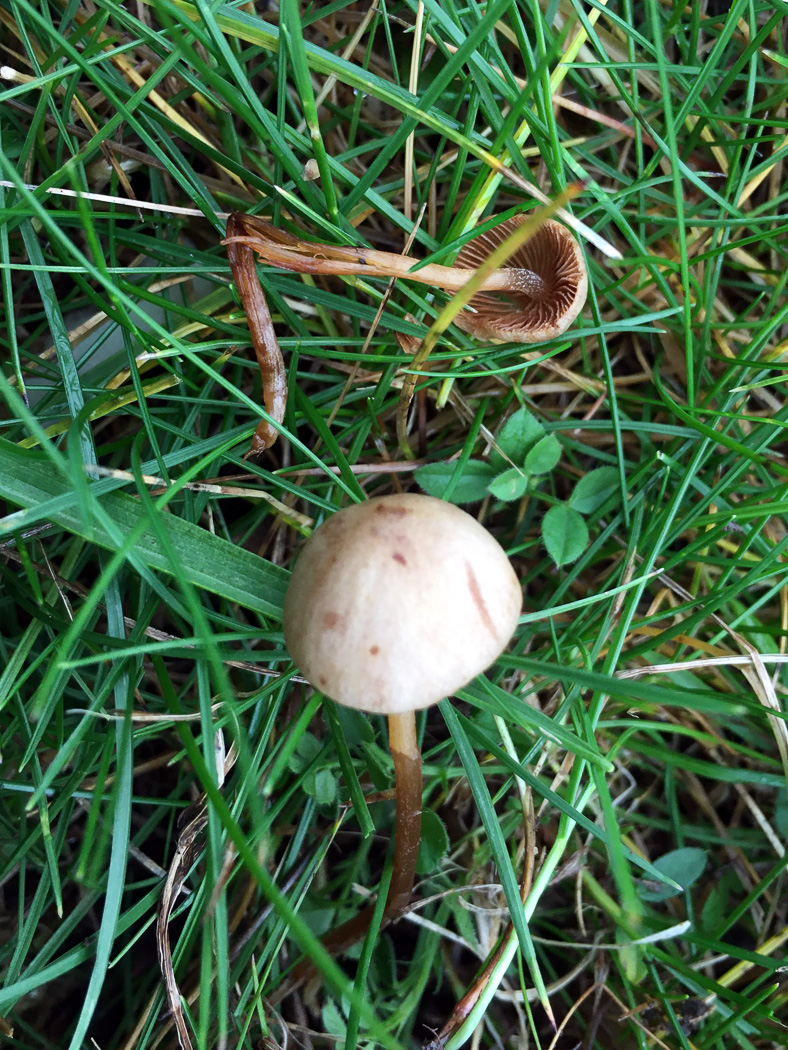
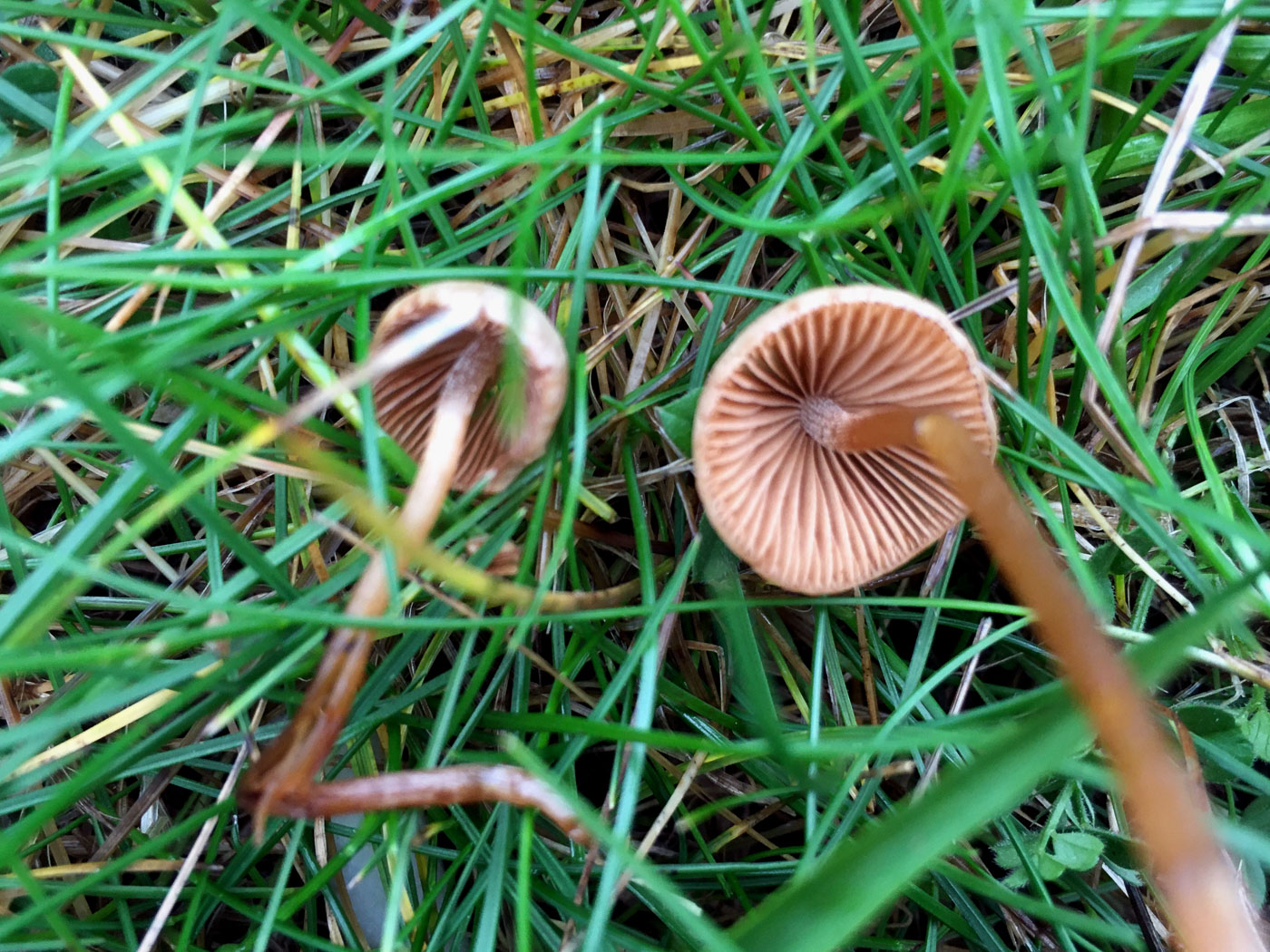 |
December 22nd Conocybe subovalis (a Conecap with no common name) 
It's amazing what you can find if you keep looking for fungi! Even this late in the season Russell Ness is still finding us new species for the list. Here is a fairly common species of Conecap found in mossy grass at Dorney Wetlands - clearly a site which is still busy fruiting. It has to be said that this little LBJ is not the most exciting and beautiful of mushrooms but, like all of this genus, it has some stunning features on the gill edge when viewed at x 400 with a scope - this being the only way one can identify the genus to species.
|
December 21st 2020
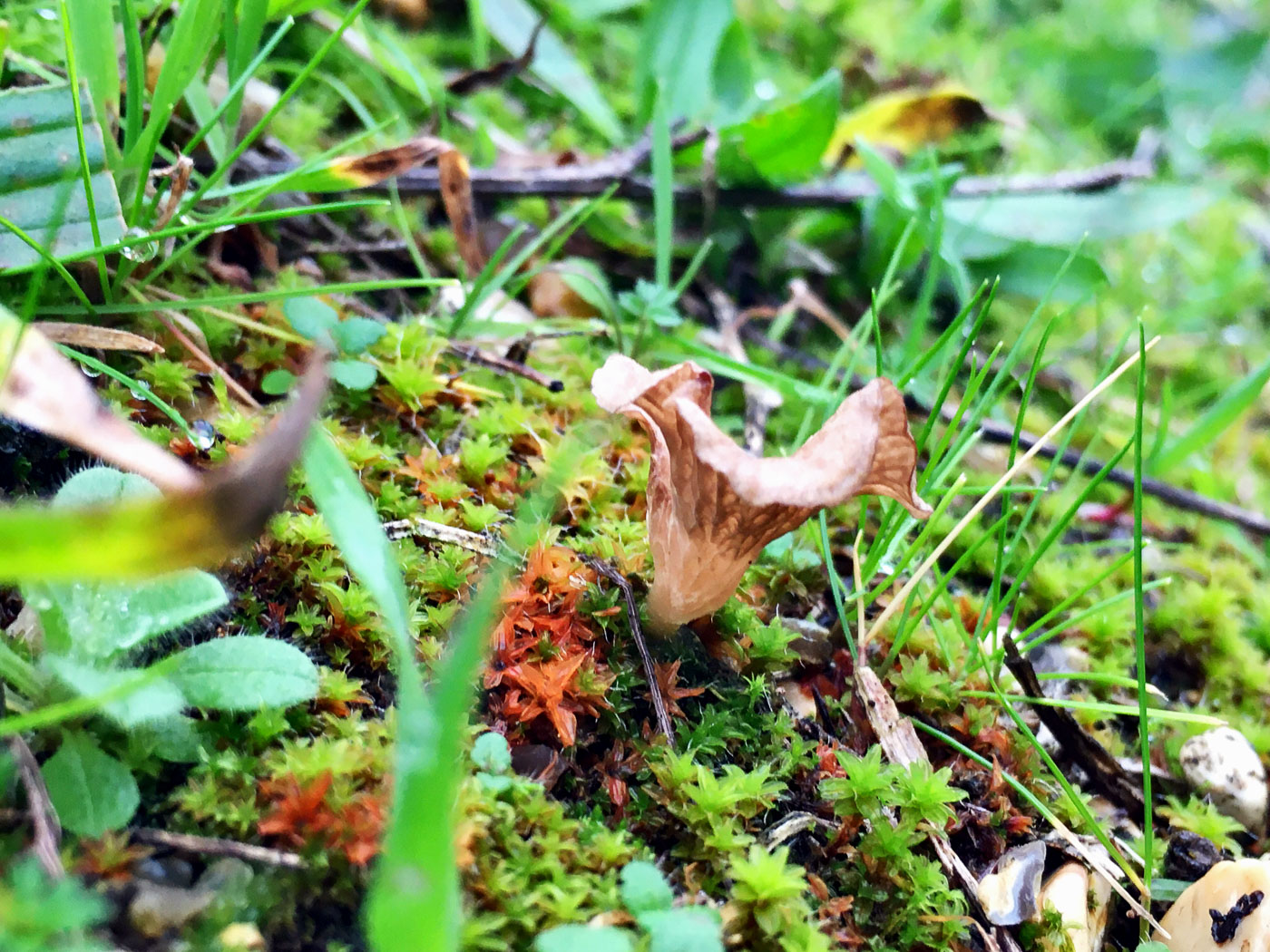
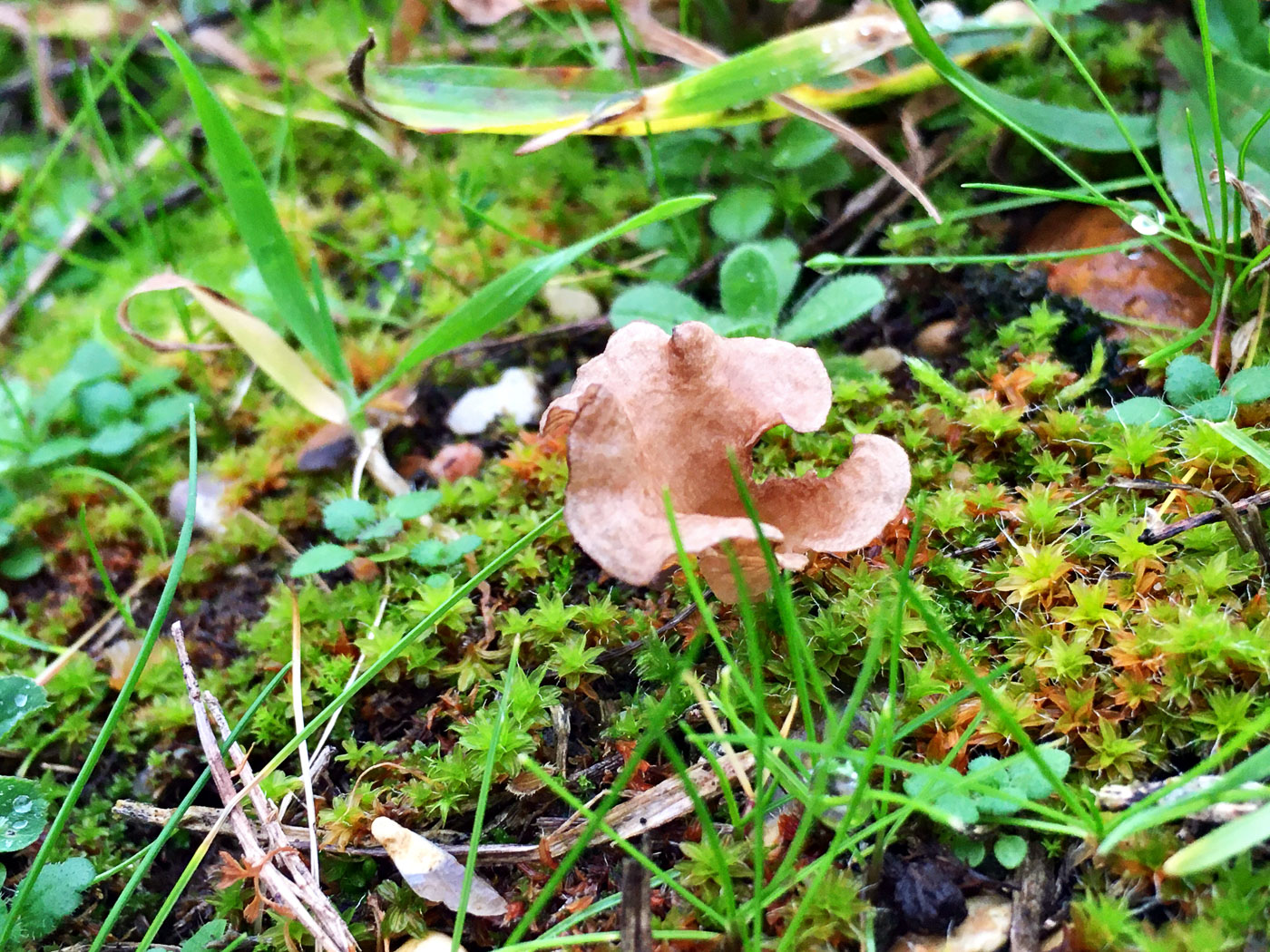
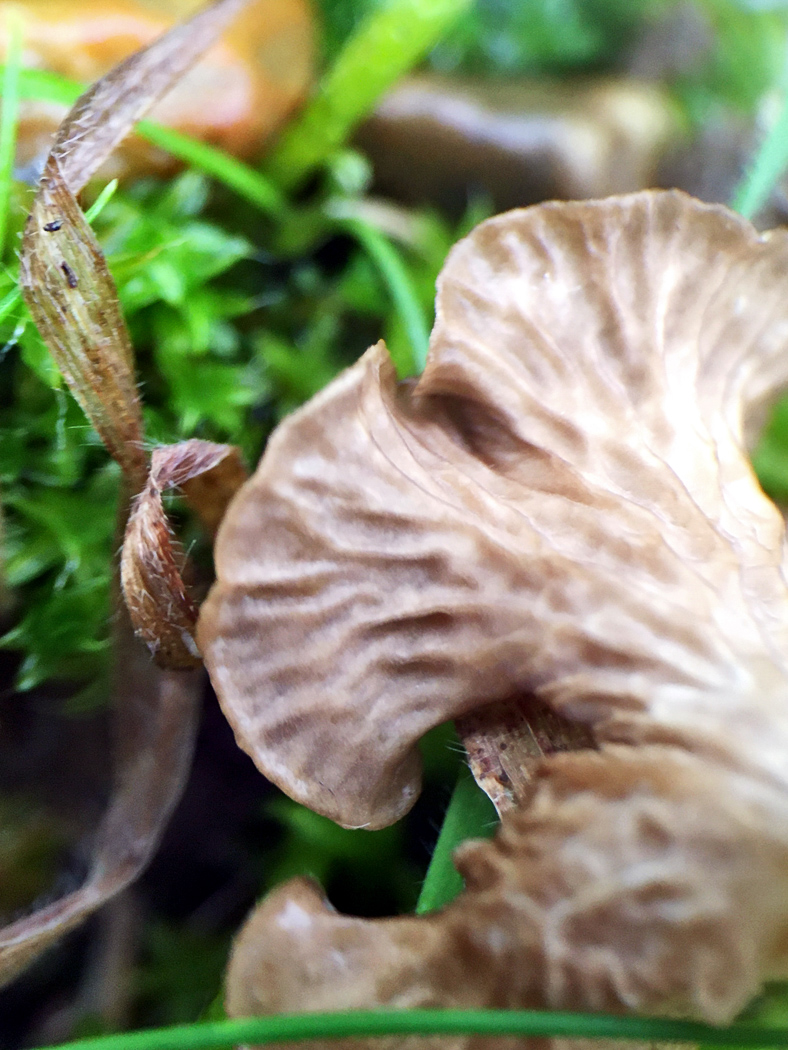 |
December 21st Arrhenia spathulata Latin (a fungus with no common name) 
In Dorney Wetlands near the Jubilee River (right on the Bucks / Berkshire border) Russell Ness found this unusual little agaric fungus amongst moss. The genus Arrhenia is a large one with about 50 species, many of which are rare and grow in association with various specific mosses. Though new to the county, A. spathulata is widespread but only occurs in heathland / unimproved grassland where suitable mosses occur. It is typically fan-shaped, only up to about 2 cm tall, and lacks true gills having merely wrinkles underneath. (Compare with Arrhenia rickenii, also found by Russell at this site, dated Nov 30.)
|
December 20th 2020
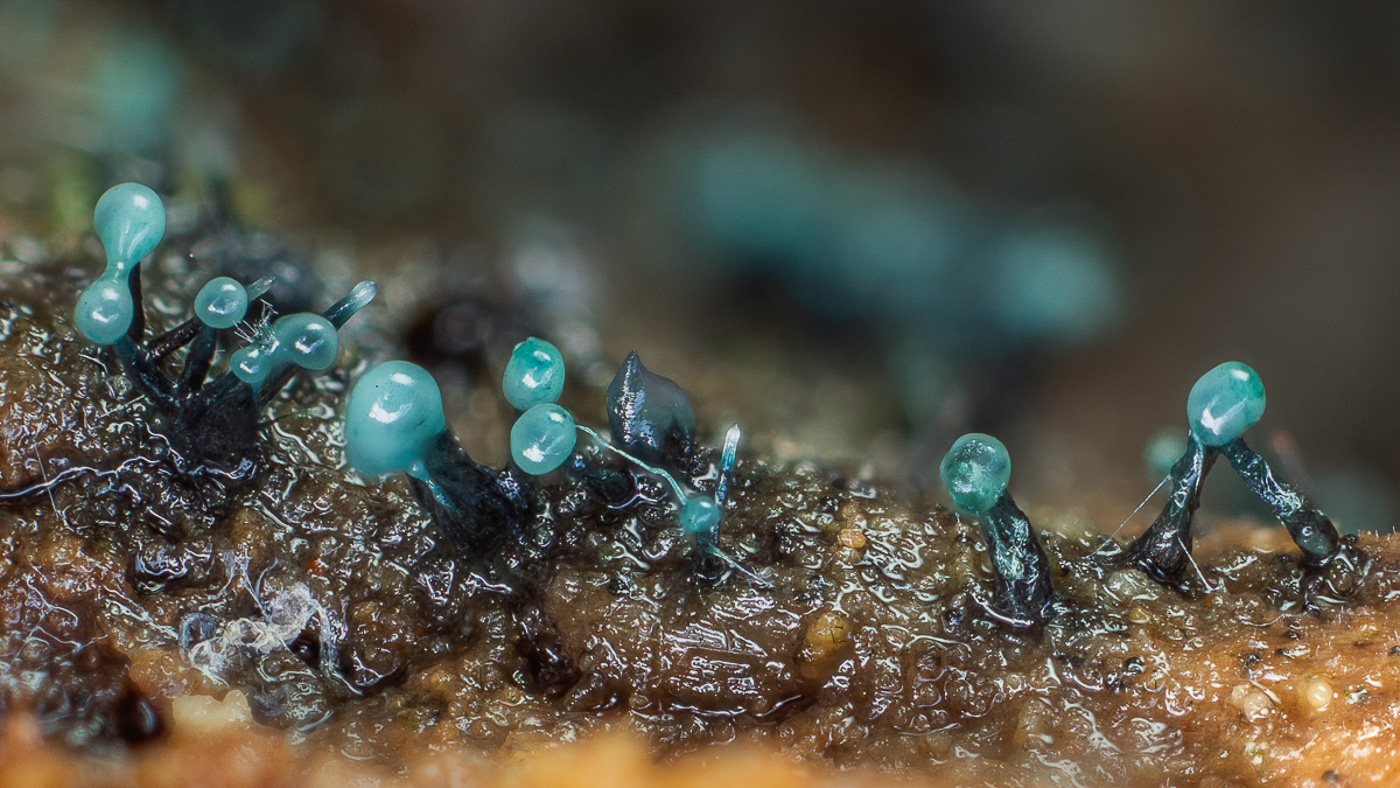 |
December 20th Dendrostilbella smaragdina (an Ascomycete with no common name)
Barry Webb first found this tiny rare fungus in Penn Wood in 2019 when it was new to the county. Today he found it there again fruiting on fallen Larch. It is such a beautiful and striking colour for a fungus and would be easy to mistake for a slime mould but is not one despite its slimy appearance. The turquoise head is filled with 'conidia' - asexual spores, a feature common to many Ascomycetes.
|
December 19th 2020
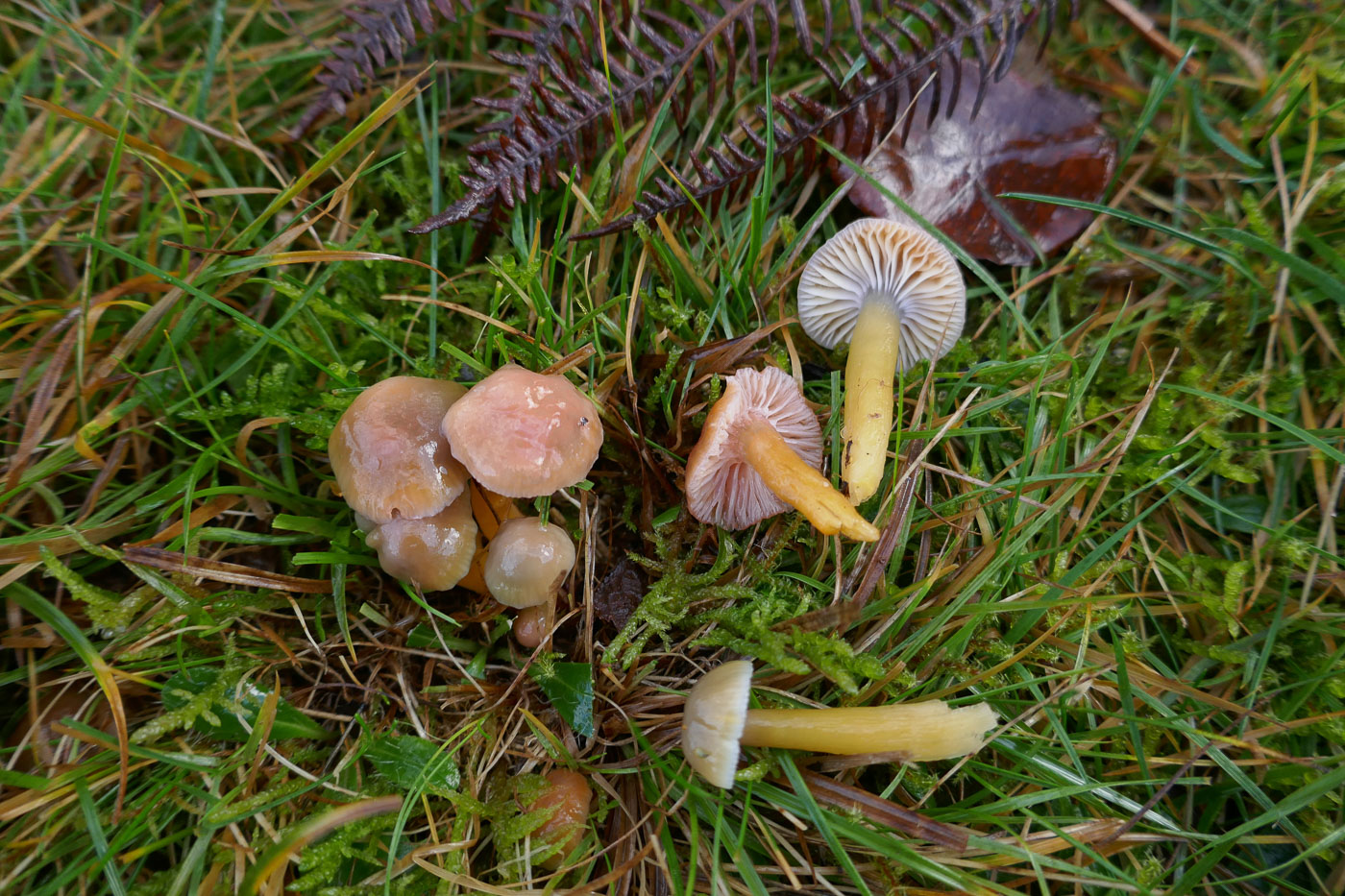
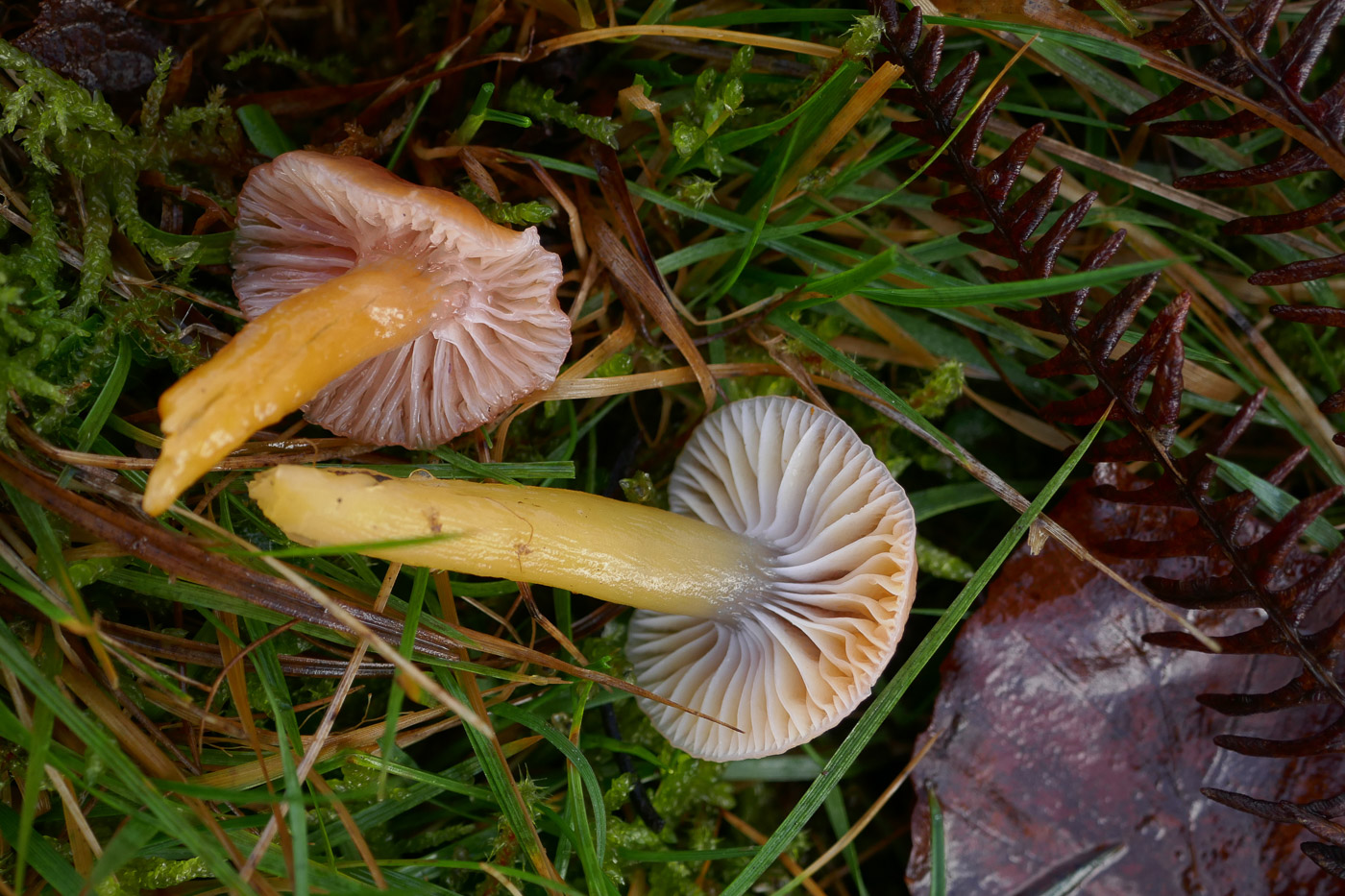
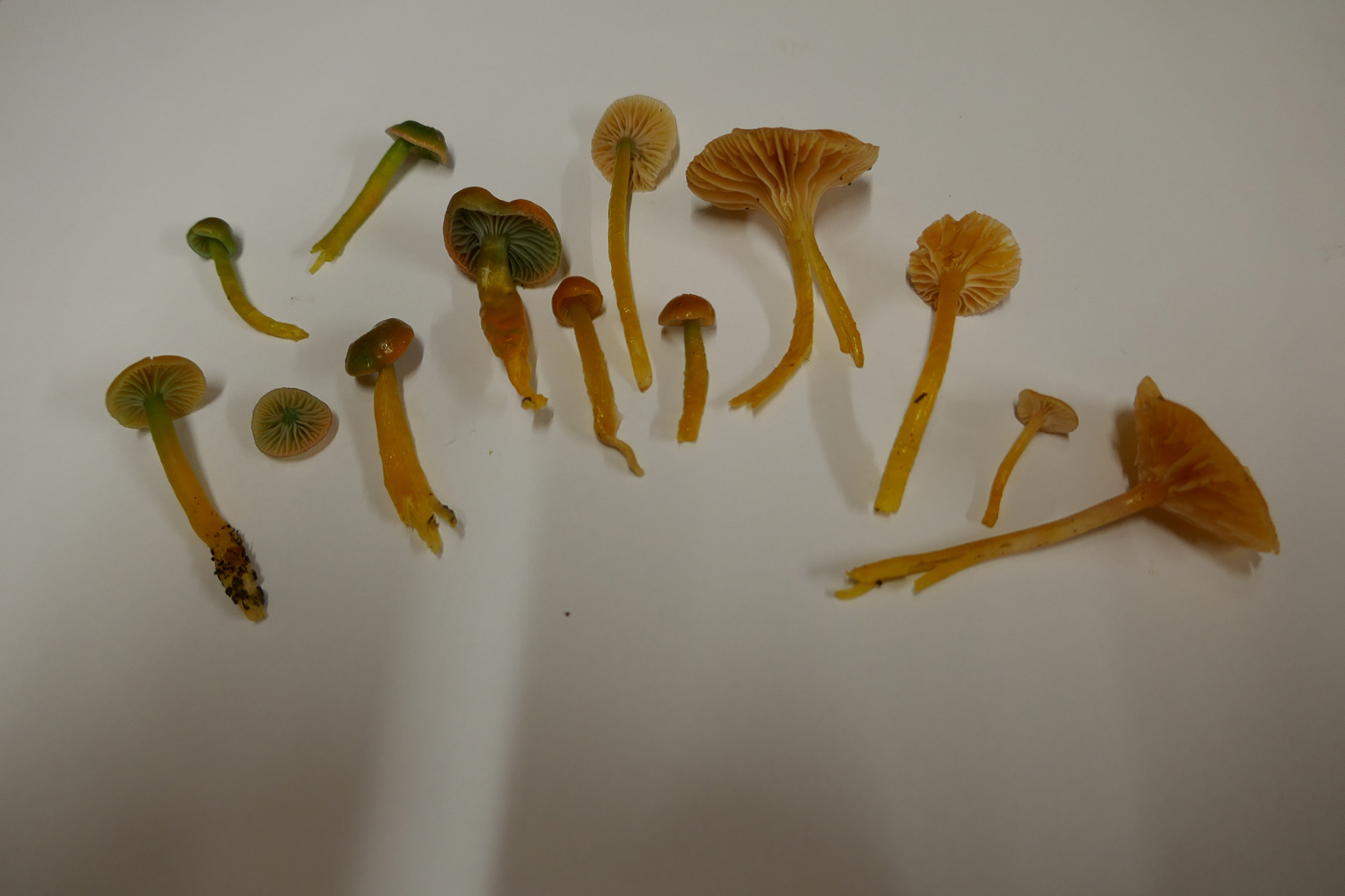 |
December 19th Hygrocybe laeta (Gliophorus laetus) (Heath Waxcap) 
On Stampwell Farm near Beaconsfield Jackie Ewan has found many species of Waxcap and other grassland fungi recently, and today's find is now the third fruiting onsite of this unusual species this autumn - in soil amongst grass near bracken. It's a species Penny C. had hoped to find elsewhere but with no success. This is one of the really slimy Waxcaps which, like H. psittacina and H. irrigata, have now been moved to the genus Gliophorus (thus needing a change to the species name ending in each case). Somewhat similar to the Parrot Waxcap, it differs in almost always lacking green tints, having a removable layer of slime along the gill edge and also a distinctive rubbery smell. (There are several varieties described which differ slightly in their colours but which are now synonymised with G. laetus.) The slightly smoky tint just at the stem apex and visible in photo 2 is also a good field pointer to the species. Photo 3 is of a collection made here by Jackie earlier in the autumn.
|
December 15th 2020
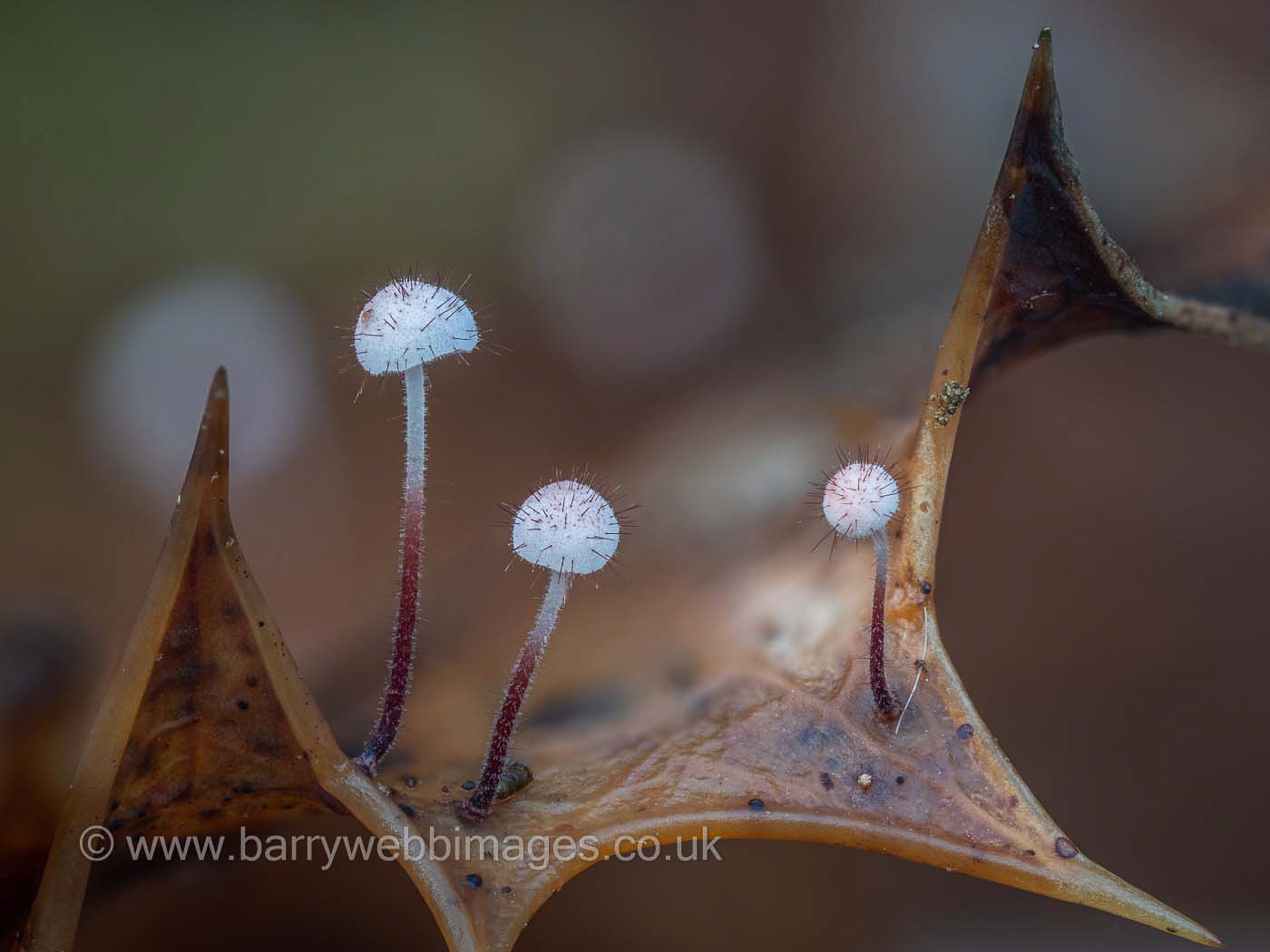
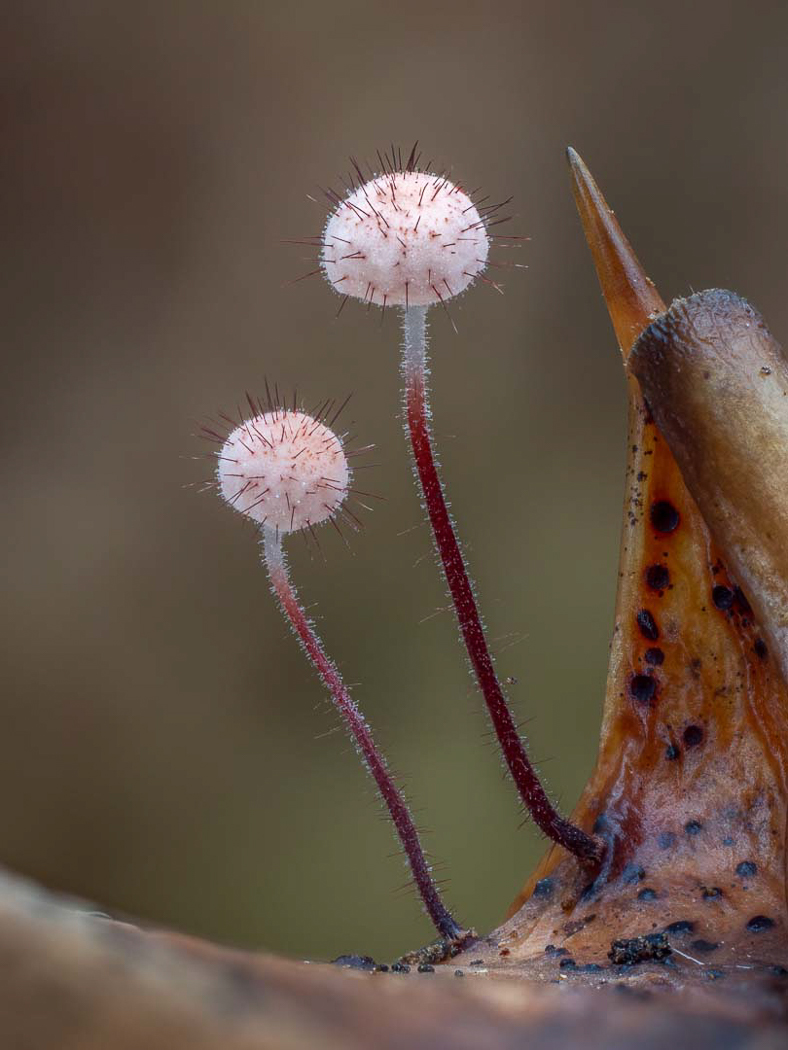 |
December 15th Marasmius hudsonii (Holly Parachute) with Trochila ilicina (Holly speckle)
Whilst cutting the hedge, Barry Webb noticed this stunningly beautiful little mushroom on a dead Holly leaf in his garden - a species Penny C. had unsuccessfully been on the lookout for! With its unique pinkish brown bristles covering the cap surface, no other Parachute can be mistaken for this species in the field, the caps being less than 6 mm across at most. It only grows on this substrate and likes damp to soggy conditions late in the season and is mostly confined to the south west of the UK, becoming rarer the further east you go. We have just one previous record for the county. Incidentally we have two for the price of one here because the little black dots visible in photo 2 are of the very common ascomycete (also host specific to holly leaves) Trochila ilicina, also new to our list.
|
December 8th 2020
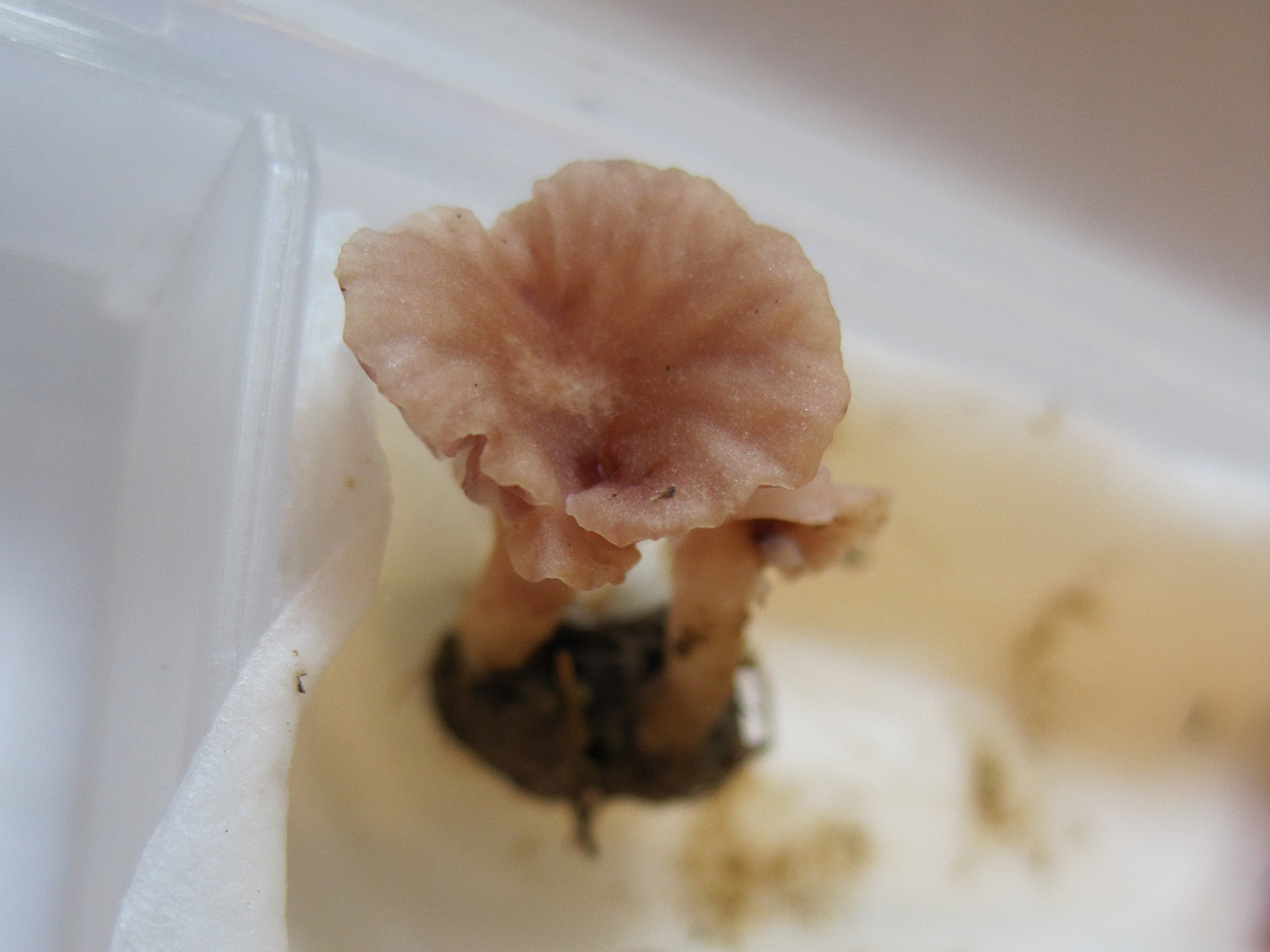
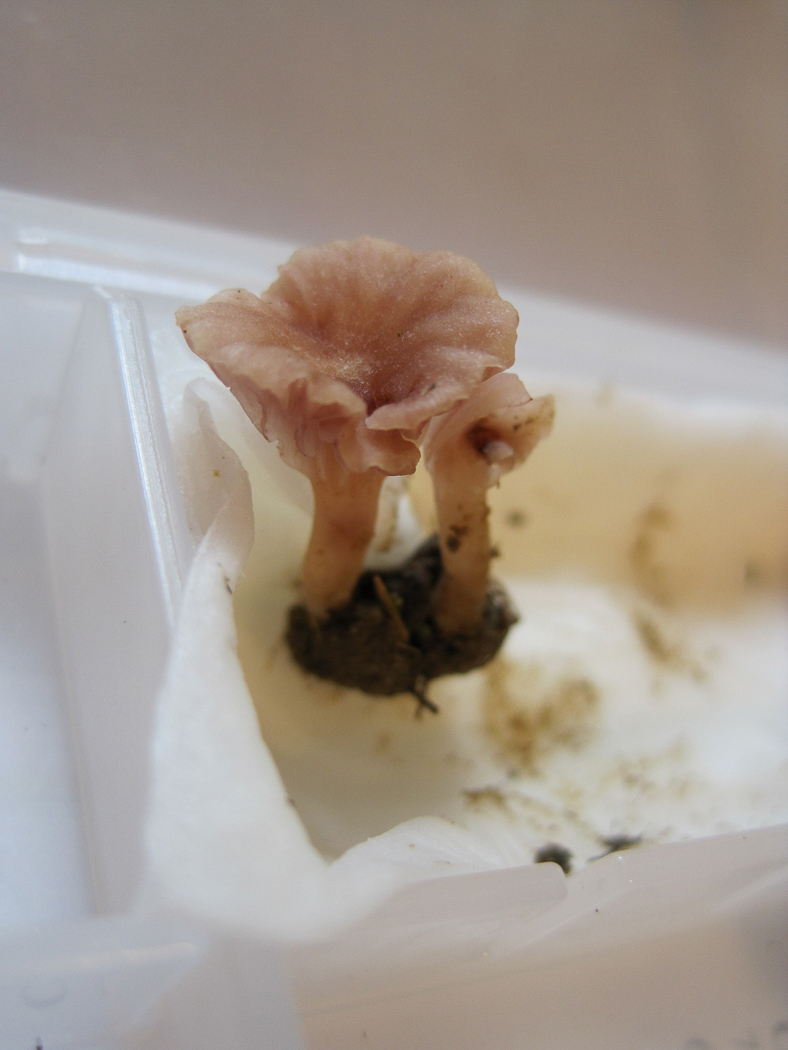
 |
***** Members' Finds species number 500 *****
December 8th Contumyces aff. rosellus (an unknown mushroom very similar to a rare fungus with no common name)
On November 4th on Brill Common Joanna Dodsworth found two tiny Omphaloid mushrooms in grass with other Waxcaps. The larger of the two was only 2 cms high with cap about 1 cm across, they were entirely pink with a violet tinge and had widely spaced strongly decurrent gills. At home the likeliest candidate seemed to be Contumyces rosellus, a rare species which she found in Kibby vol. 2. We have today just received news of the DNA sequence from her material, which shows no exact matches known but the nearest is indeed Contumyces rosellus, a species with under 30 UK records and new to the county. However, the match is not that close (hence C. aff. rosellus) and it may turn out in time to be a species new to science or at any rate new to the UK. We now have a second collection of this species, the sequence of which exactly matches Joanna's Brill collection, and found on Stampwell Farm near Beaconsfield by Jackie Ewan, also dated Oct 4th.
|
December 7th 2020
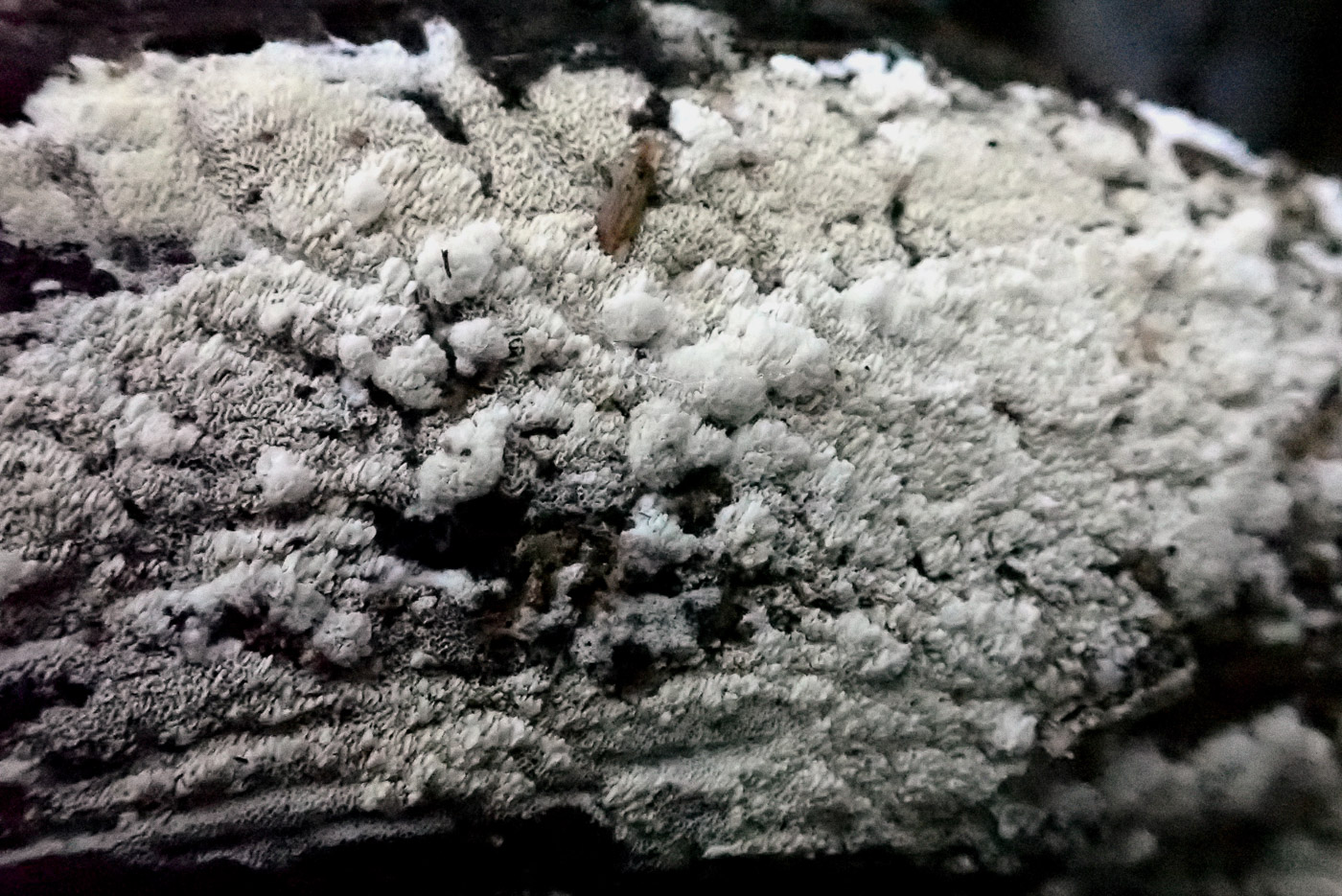
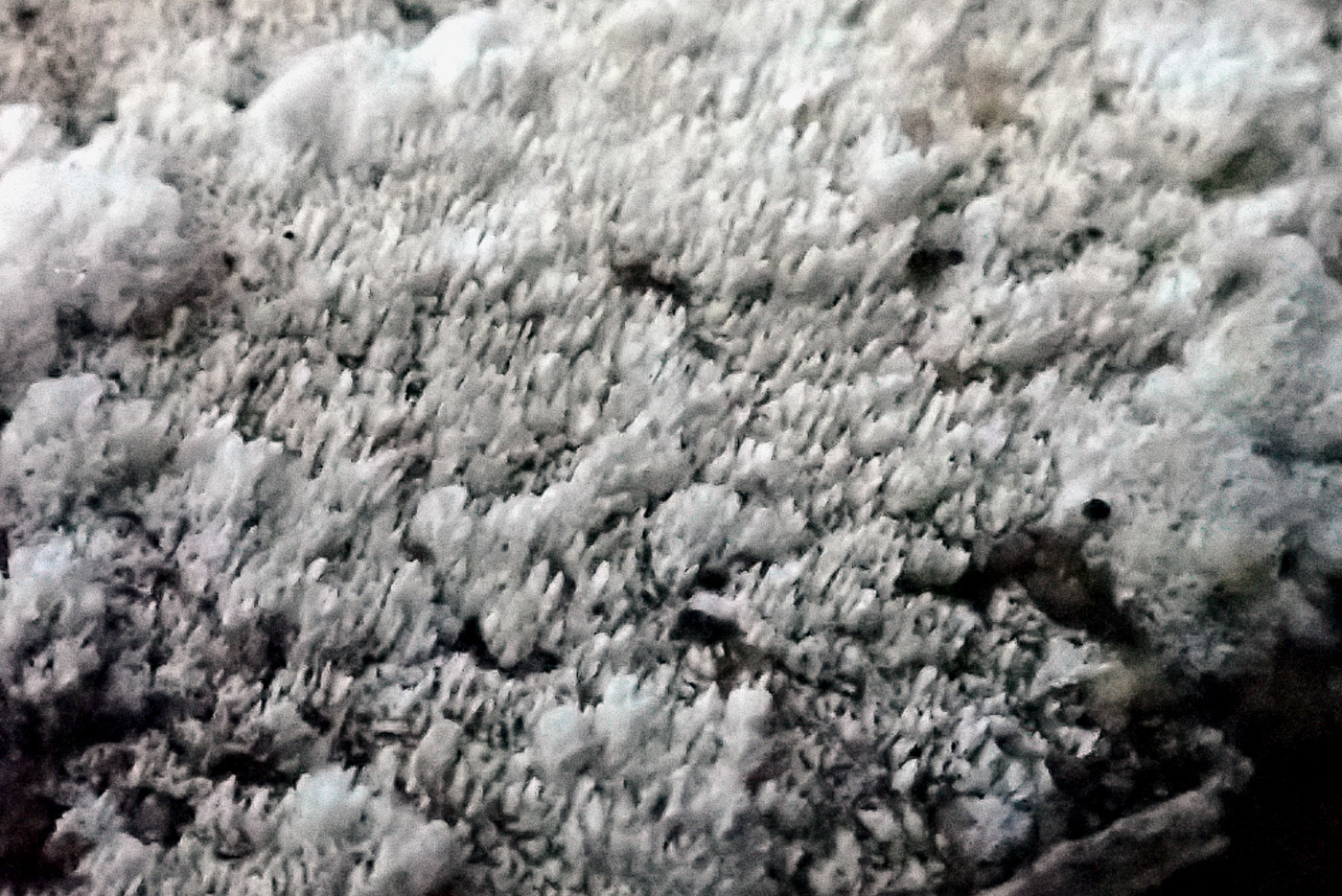 |
December 7th Schizopora paradoxa (Split Porecrust)
In Penn Wood Penny C. found a pile of fallen deciduous wood, knowing that this very common resupinate species - one not yet on our list - was very likely to be present somewhere. Sure enough there were several large patches tightly covering the dead wood, probably Beech on which the species is extremely common. The creamy white pore surface (which is on the outside as it does not form brackets) is very variable: mazelike and roughened to almost toothlike.
|
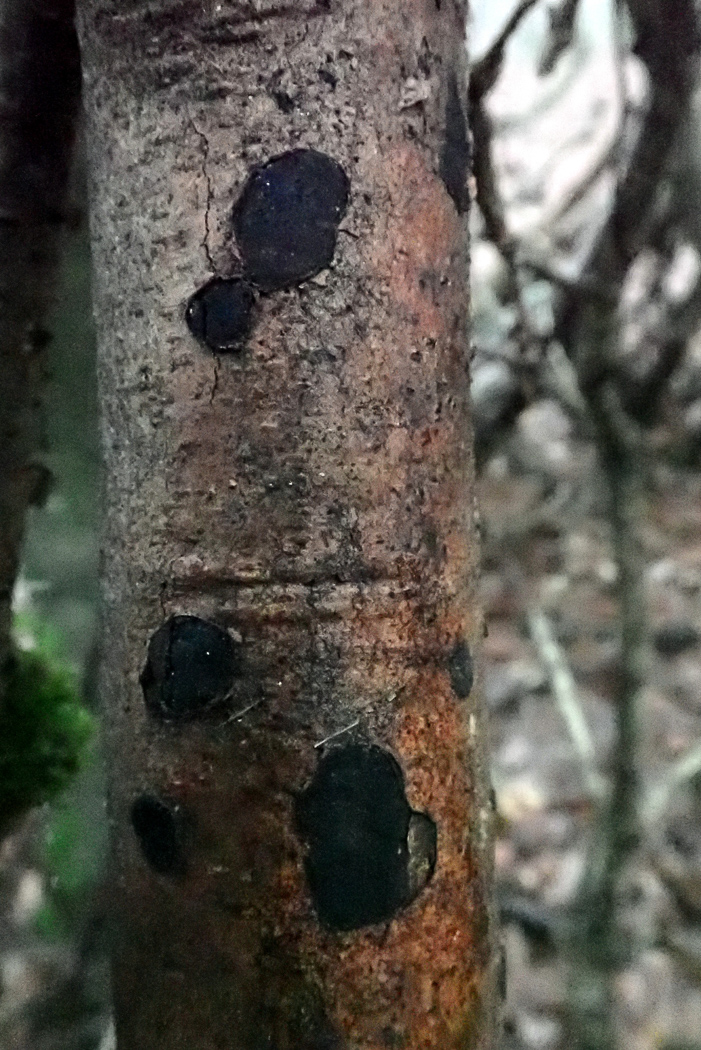
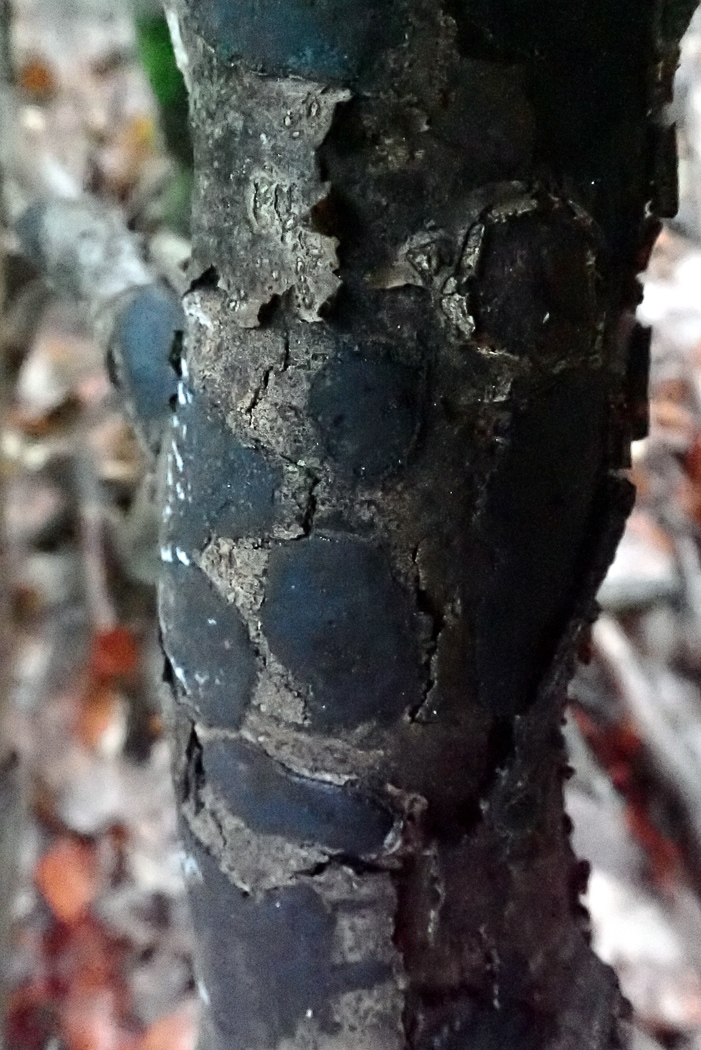
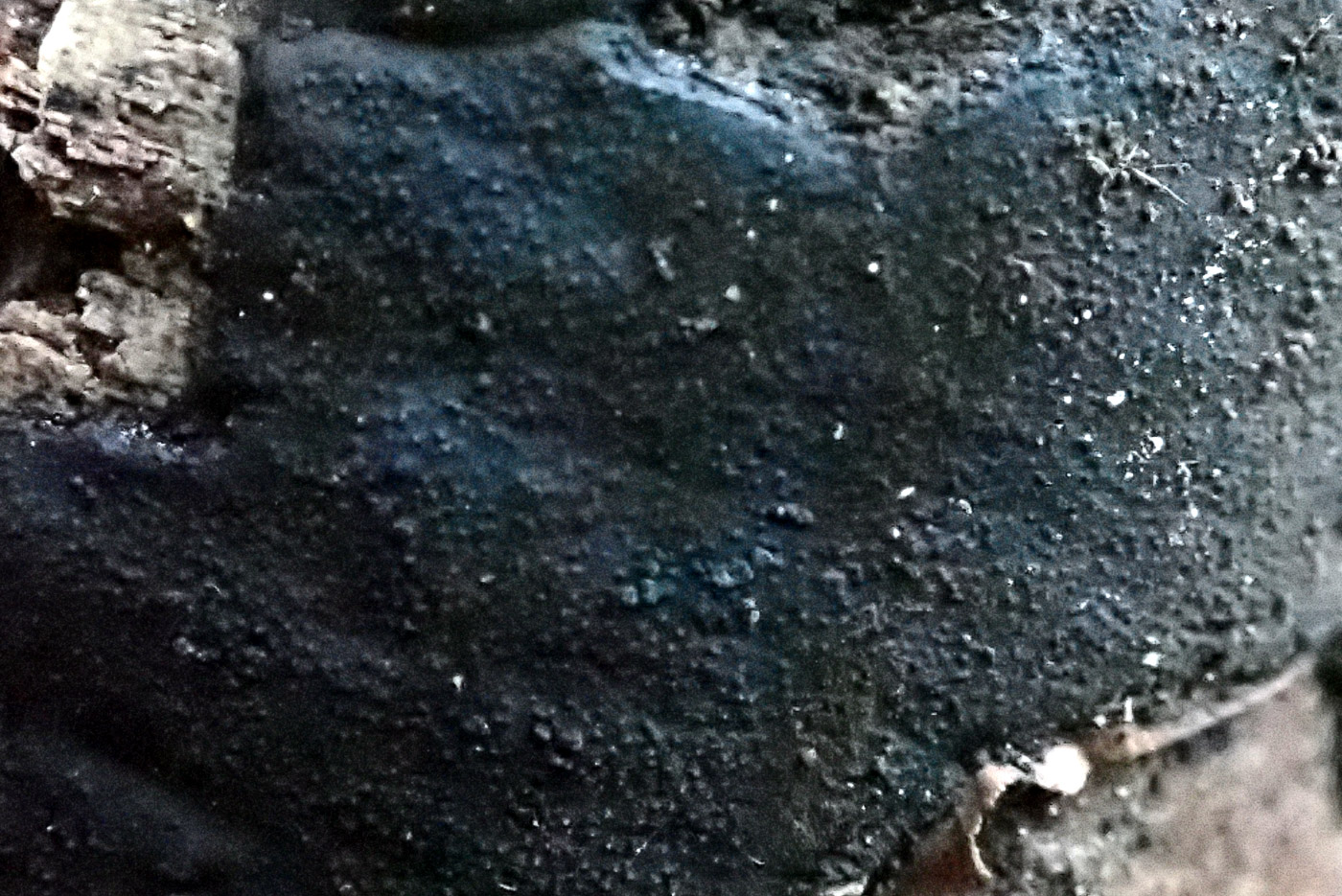 |
December 7th Biscogniauxia nummularia (Beech Tarcrust)
On the same wood pile in Penn Wood as the Schizopora Penny C. found these black almost smooth lozenge-shaped patches dotted about on a Beech branch. This is one of quite a few common crusty black Ascomycetes which favour smooth barked deciduous wood and is nameable in the field if one notices its typical rather irregularly roundish flat patches which are about 1-2 cms across. Close up the tiny 'ostioles' (bumpy openings through which the spores are expelled) can be seen covering the surface.
|
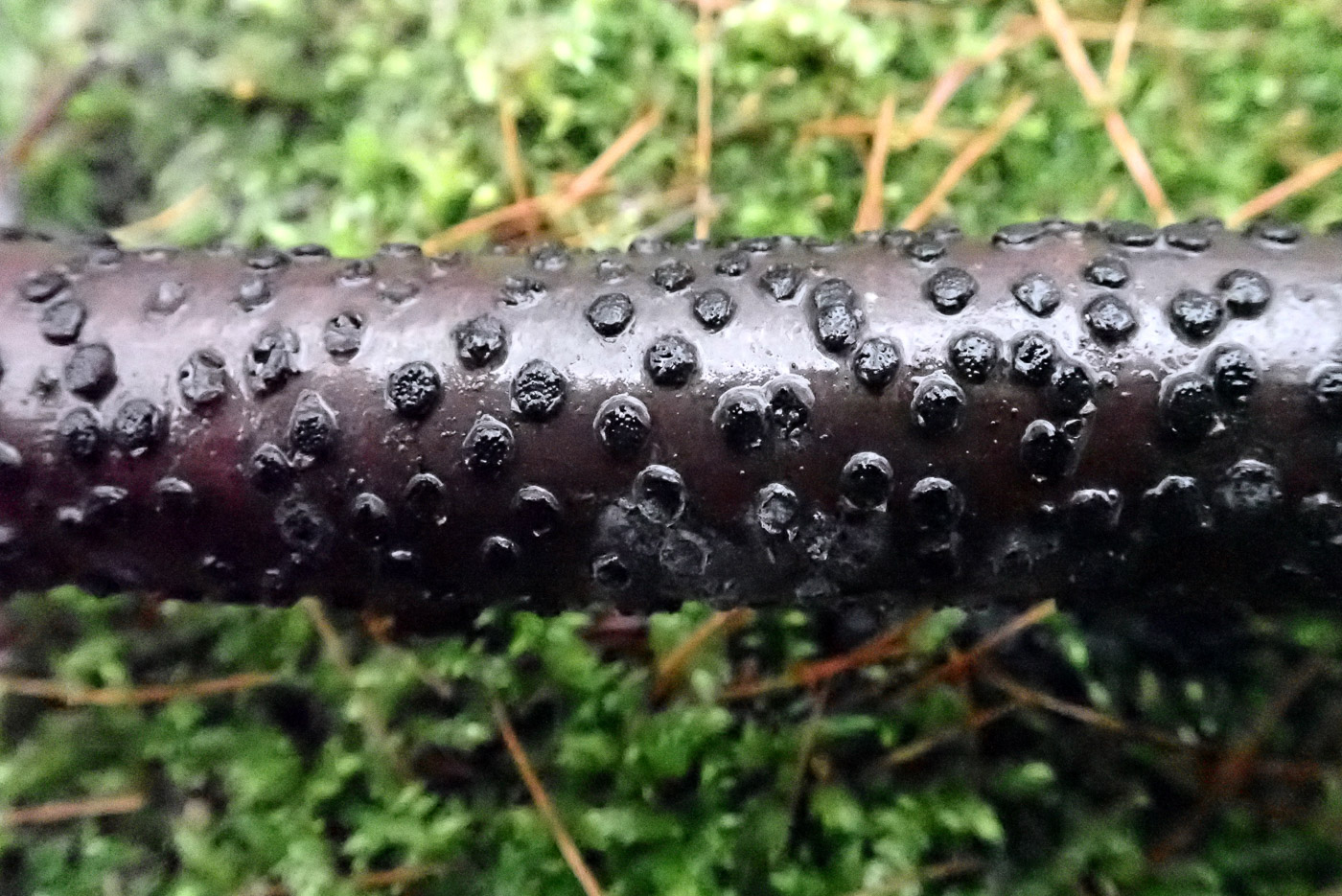 |
December 7th Diatrype disciformis (Beech Barkspot)
This was yet another common crusty black Ascomycete species found by Penny C. in a wood pile in Penn Wood on a cold and foggy dismal day. The small round raised black blisters, only about 5mm across, could perhaps be mistaken for a species of Hypoxylon (see an example dated Sept 22) but these emerge breaking through the surface of the bark rather than grow on it. Note the tiny ostioles, found on the surface of all the Pyrenomycete species (the crusty black wood inhabiting Ascomycetes).
|
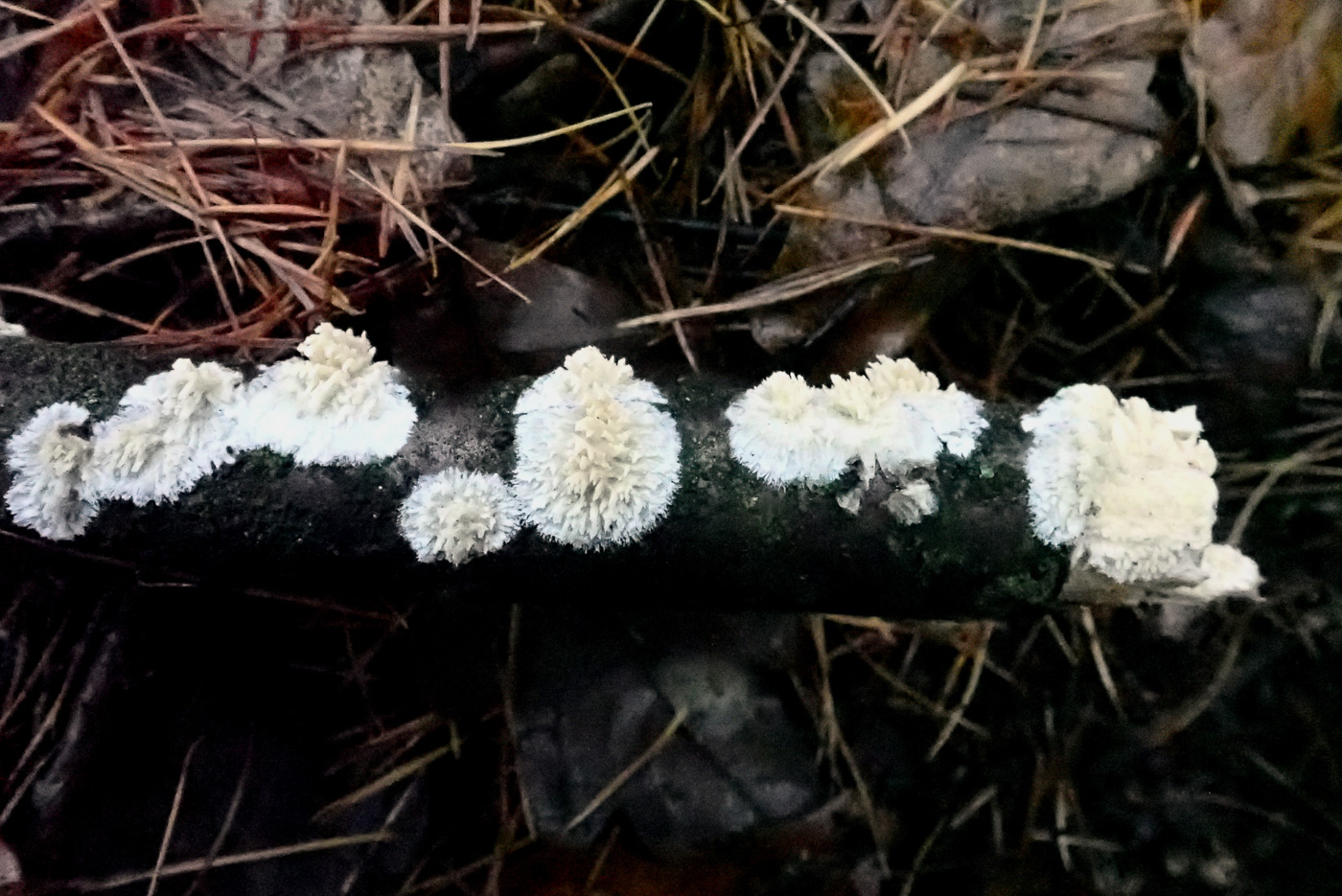
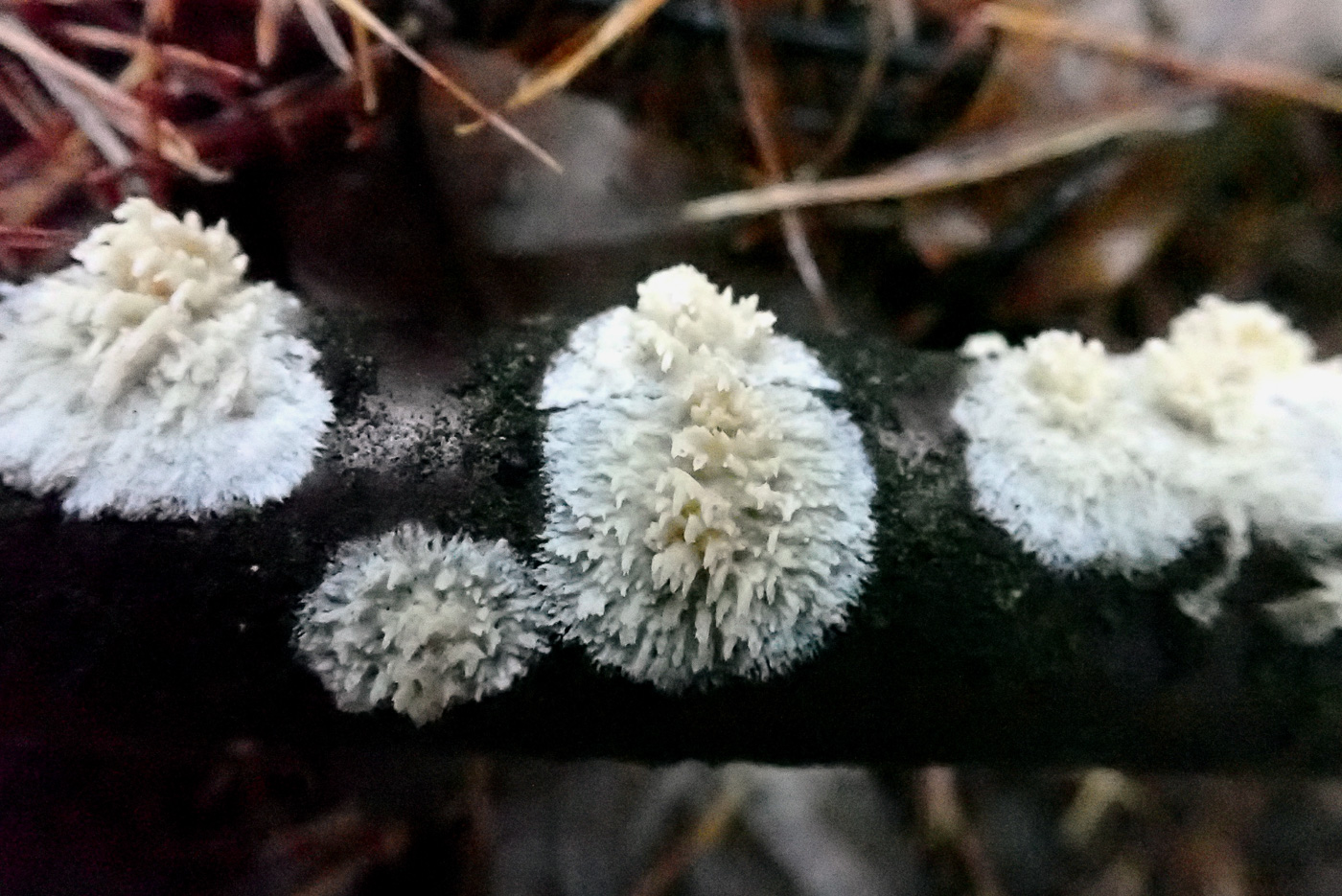 |
December 7th Basidioradulum radula (Toothed Crust)
On various sticks in Penn Wood Penny C. found examples of another very common resupinate fungus. The surface is not dissimilar to that of the Schizopora described above, i.e. roughened and almost toothlike especially in the centre, however unlike that species it does not form a large even covering over the wood but is recognised by its round individual creamy patches which start out about 1 cm across, each individual patch white and frilly at the edge and raised, darker and almost furry in the centre. It is common on deciduous wood but less usual to find on conifer - here it was on Larch.
|
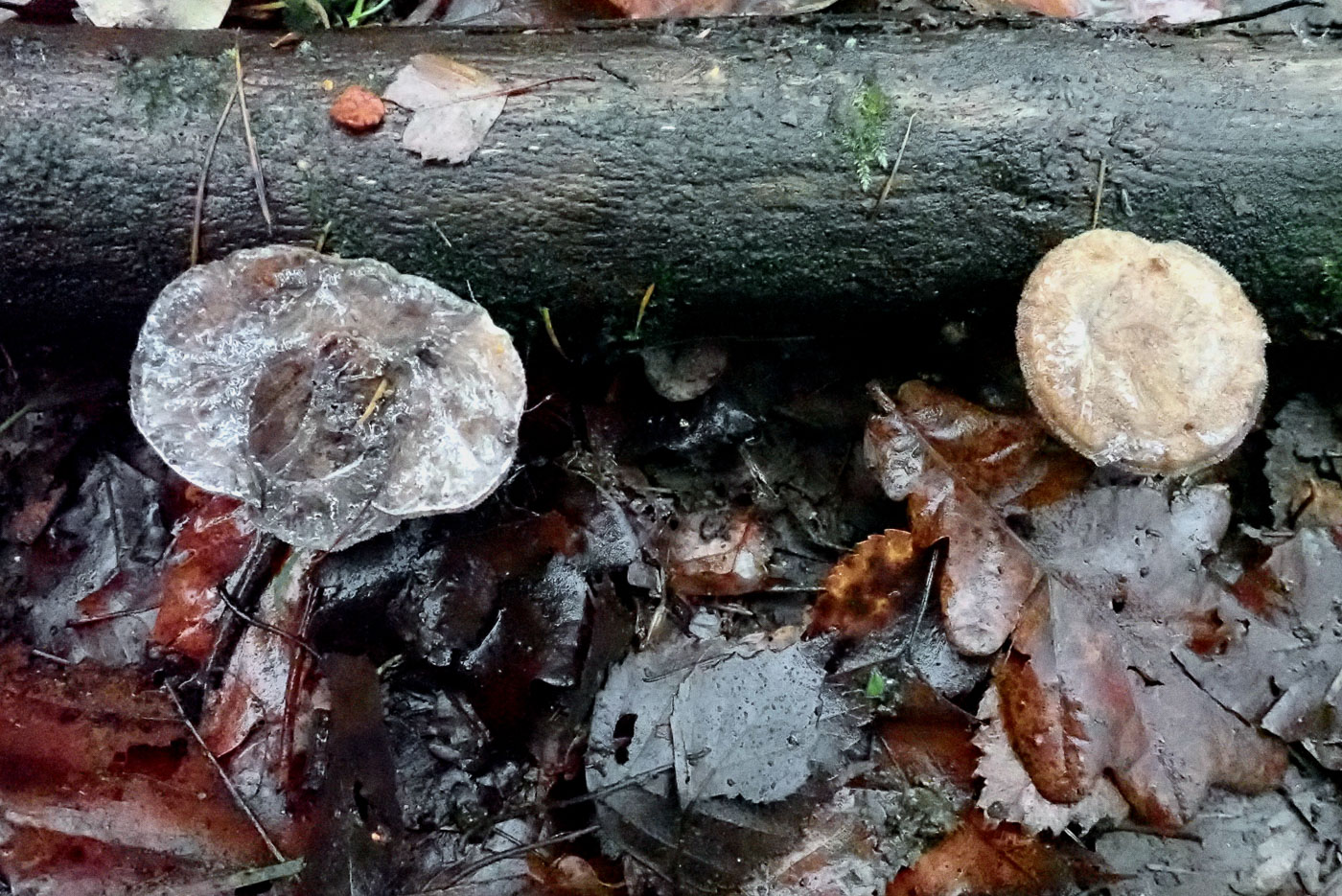
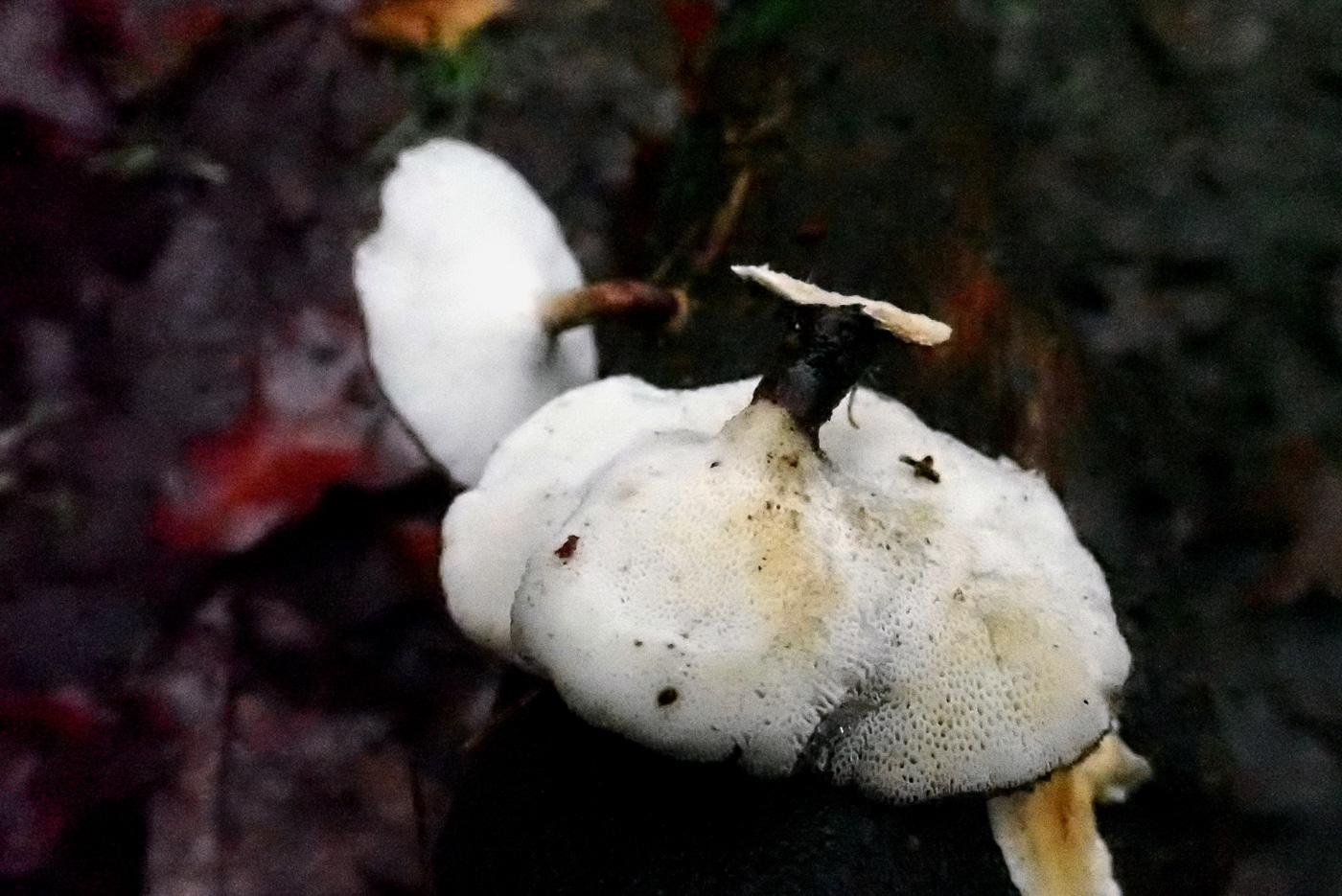 |
December 7th Polyporus leptocephalus (Blackfoot Polypore)
On a Beech stick in Penn Wood Penny C. noticed these caps (frozen solid!) and turning the stick over saw that it was this very common species of Polypore (probably the commonest species) which for some inexplicable reason has been missing from our list. Though similar to several other Polypores the diagnostic field character to look for is the black base to the stem (hence its common name). It was previously (and possibly better)known as P. varius.
|
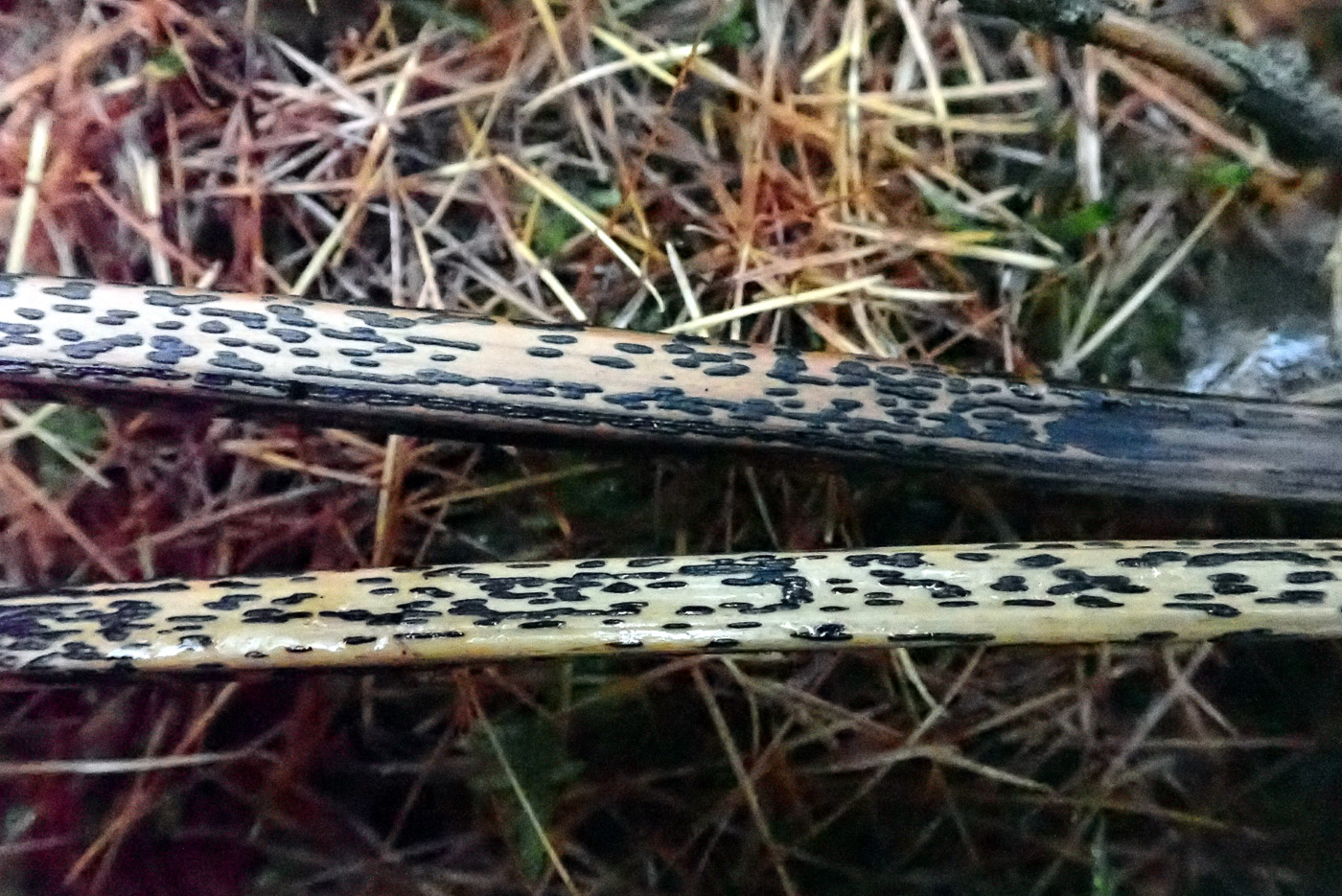 |
December 7th Rhopographus filicinus (Bracken Map)
In Penn Wood Penny C. found examples of this very common Ascomycete which grows on old stems of Bracken. Not the most exciting fungus but a useful species to bump up numbers on any foray list if Bracken is present - it's quite tricky to find a patch of Bracken without it!
|
December 2nd 2020
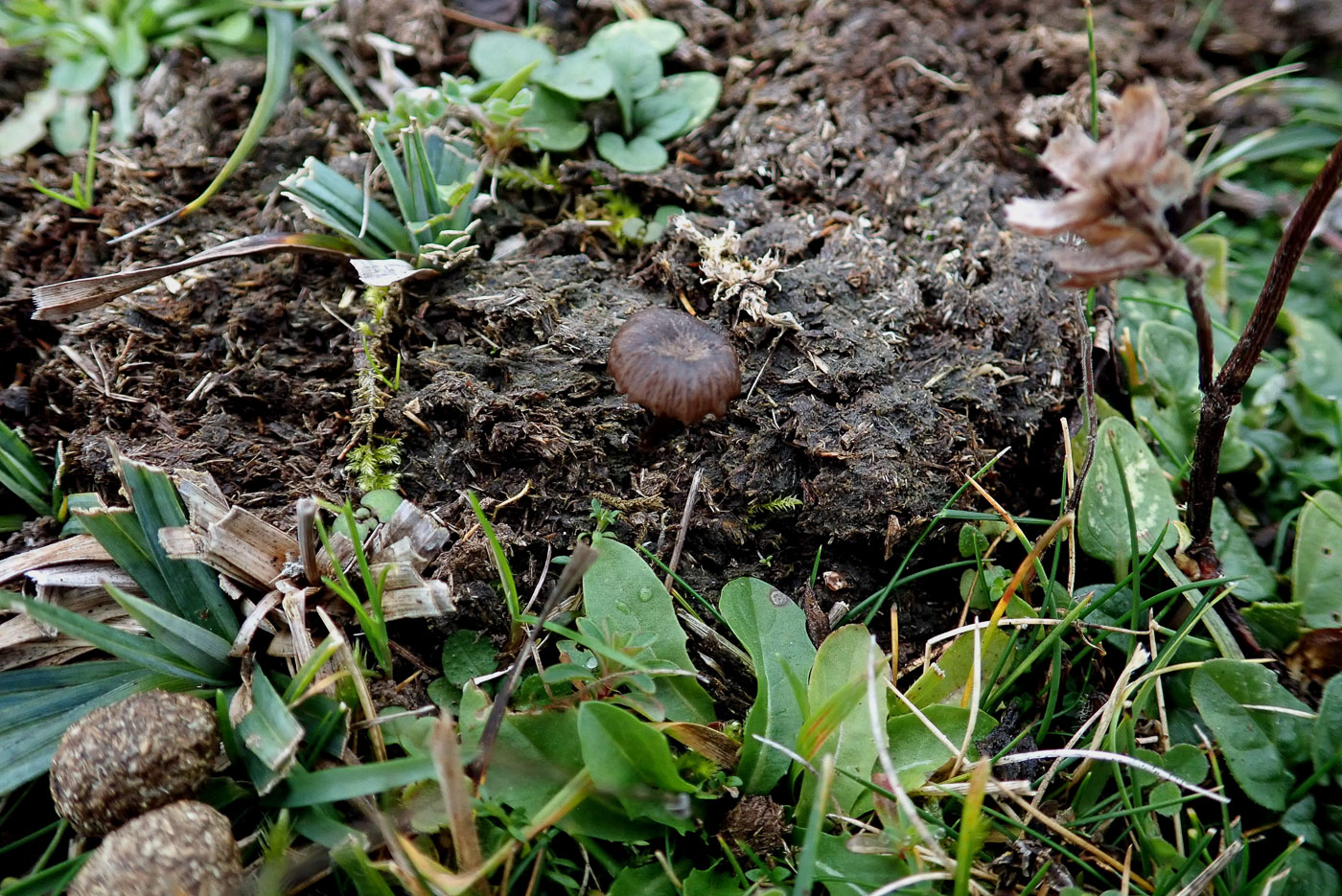
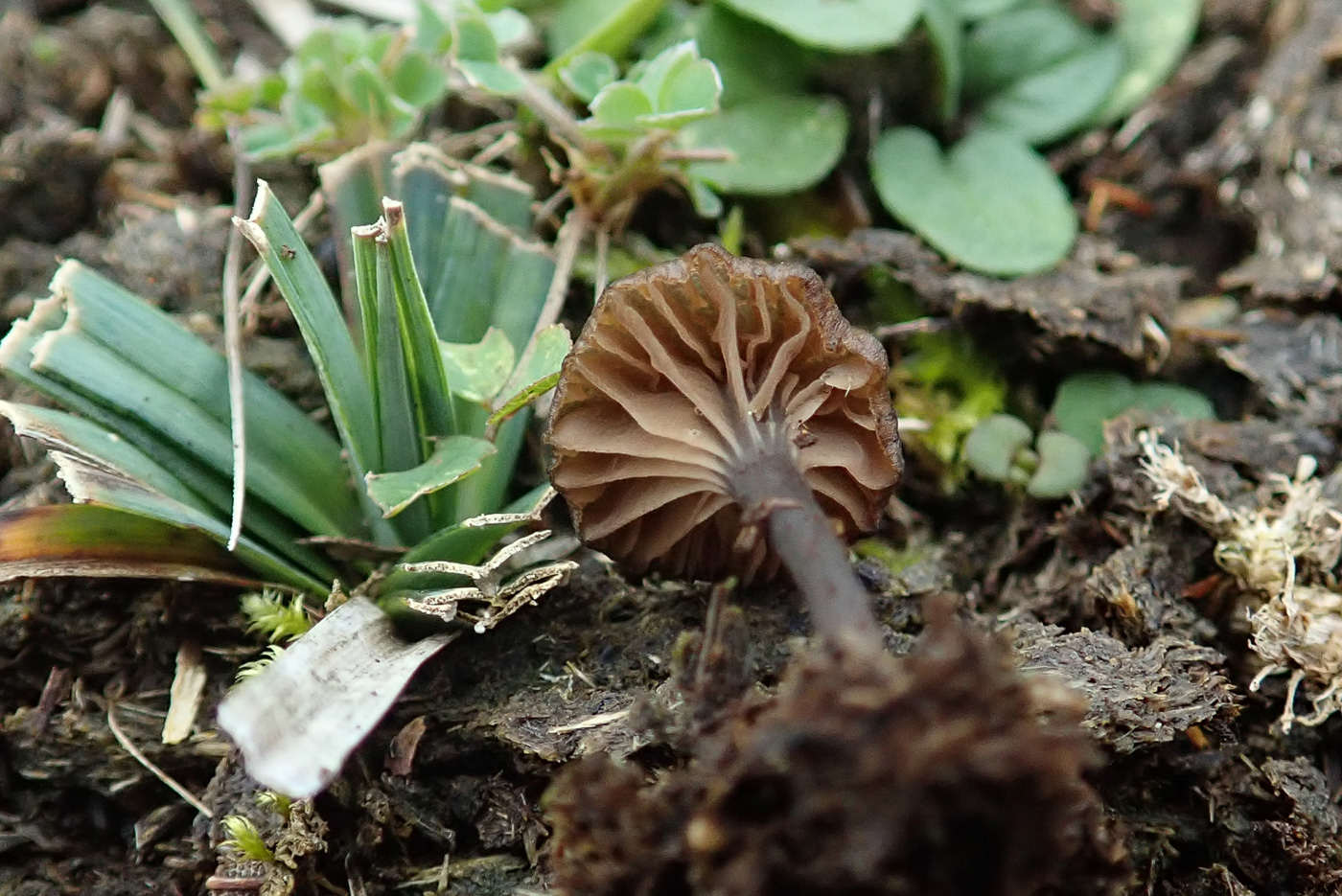 |
December 2nd Entoloma graphitipes (a Pinkgill with no common name) 
On a cowpat in the Grangelands at Pulpit Hill Penny C. found a singleton tiny dark brown mushroom which was unfamilar to her. Turning it over revealed strongly decurrent and widely spaced gills reminiscent of a species of Omphalina, and it was not until she looked at the shape of the spores at home that the genus Entoloma became immediately apparent. Following various keys led her eventually to the rare E. rusticoides but neither this nor any similar species she could locate occur on dung. The specimen was therefore sent for DNA sequencing with the resultant matching (March 2021) to E. graphitipes, a species first described from Germany in 2007 (with a var. cystidiata then described from Spain in 2013 to which this P|ulpit Hill specimen is in fact the closest match) thought his appears to be the first occurrence on dung. So this is yet another species new to the UK!
|
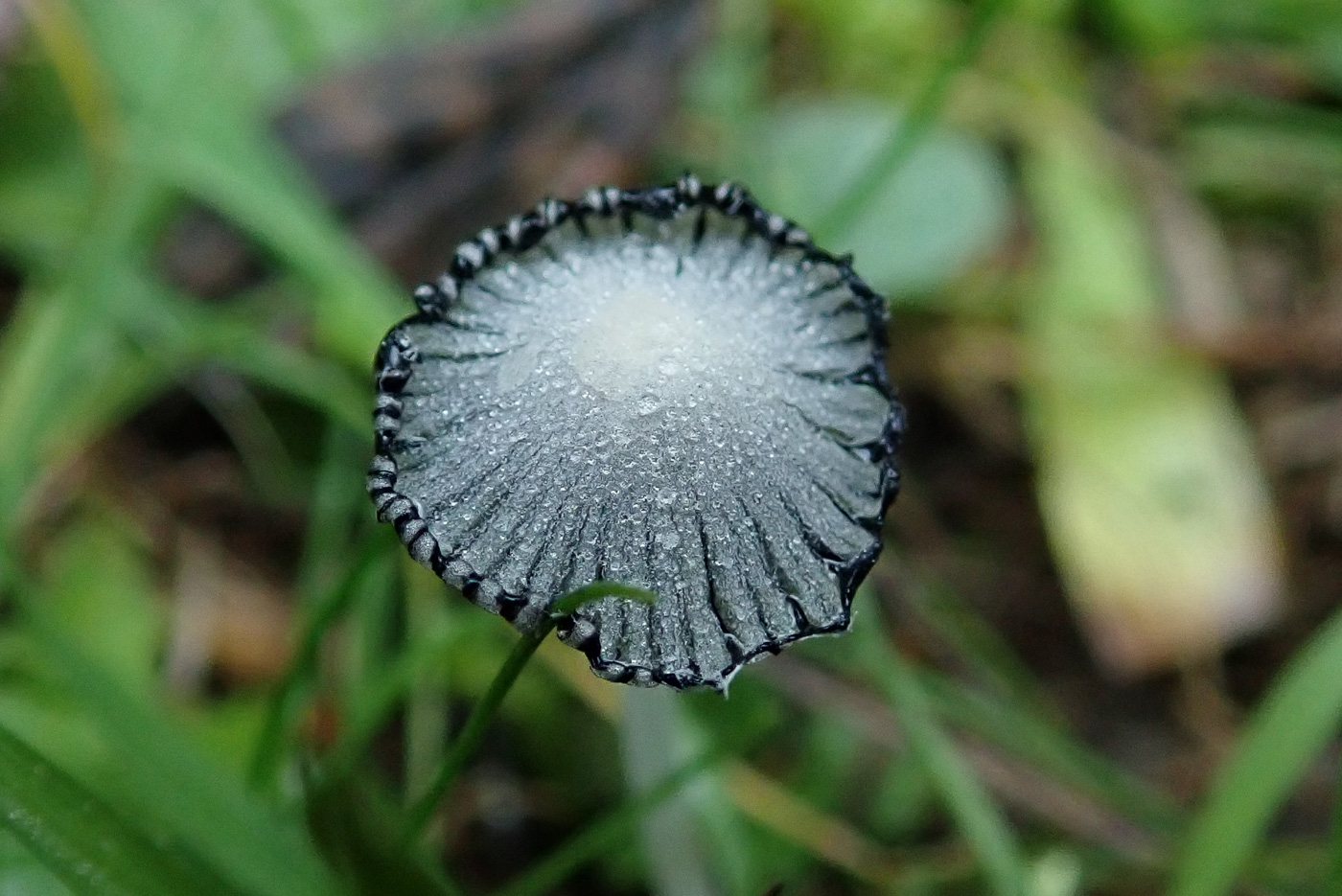
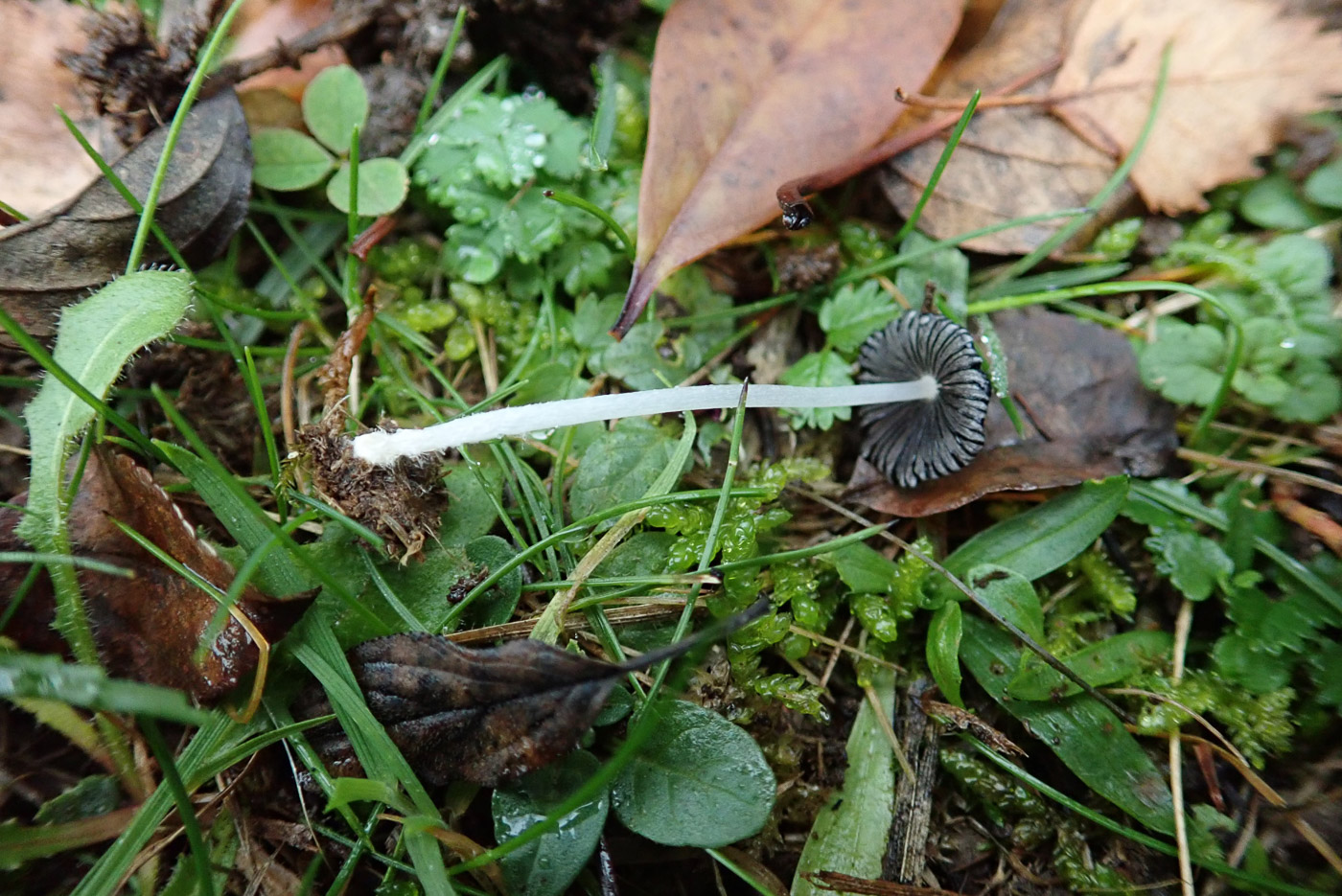
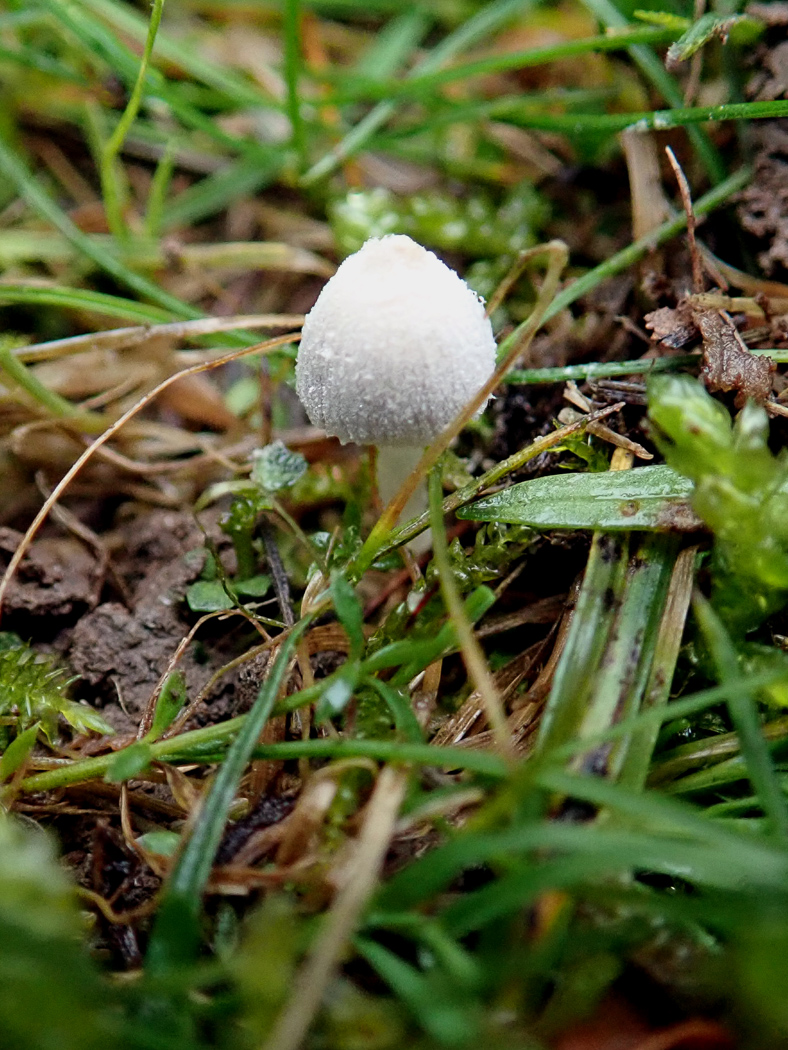 |
December 2nd Coprinopsis pseudonivea (an Inkcap with no common name) 
Adjacent to a patch of rotting cow dung in the Grangelands at Pulpit Hill Penny C. noticed these two tiny fruitbodies, the largest (less than 1 cm across) clearly displaying the characteristics of an Inkcap. Closer inspection revealed copious veil (like icing sugar) on the cap and she noticed the slightly pinkish tint to the unopened cap which instantly rang a bell, having found this particular species before. At home the veil cells and spores confirmed the identification. Close to the better known C. nivea (Snowy Inkcap) also found on cow dung, this species is far less commonly recorded and we have just a handful of county records though it was new to the site today.
|
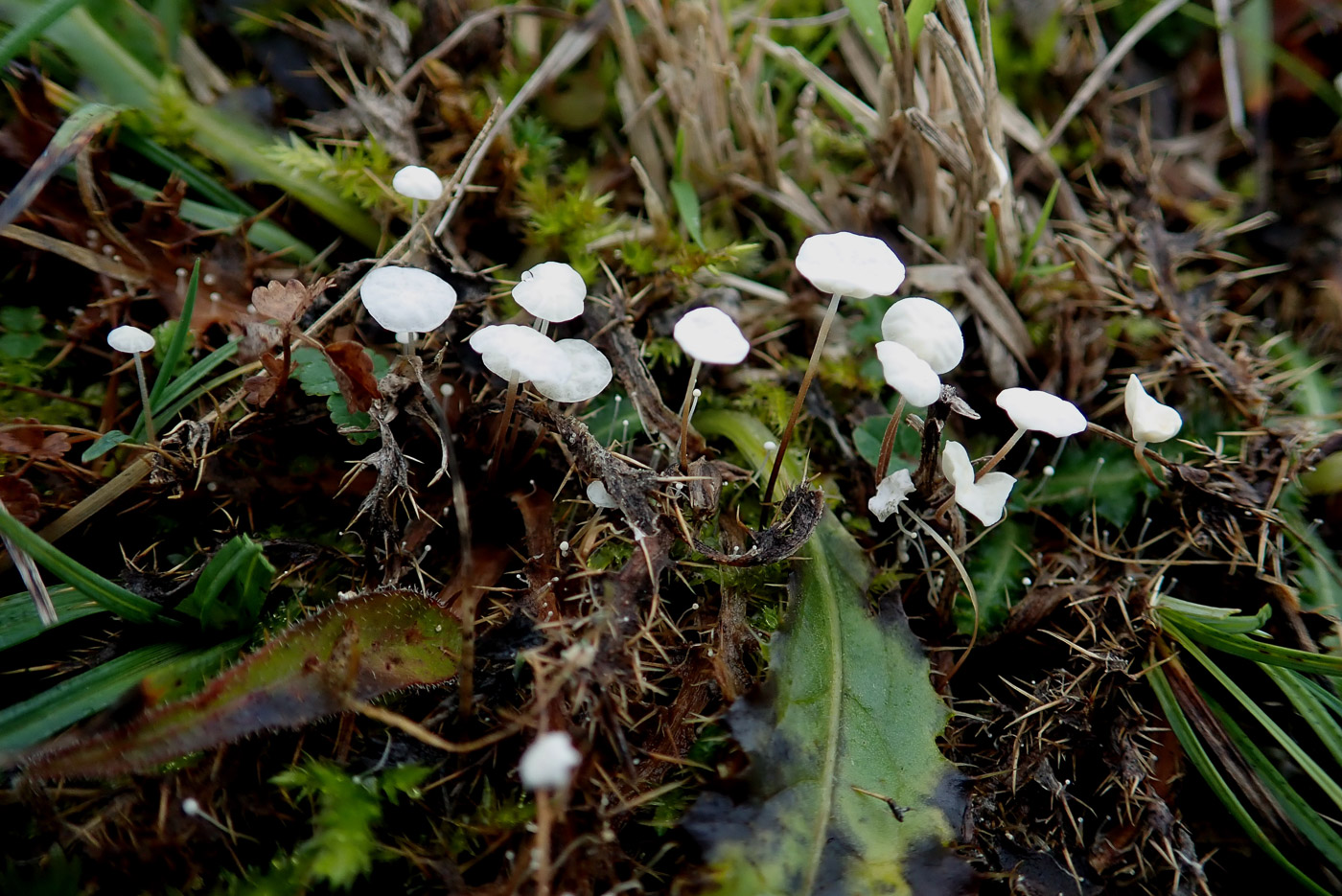
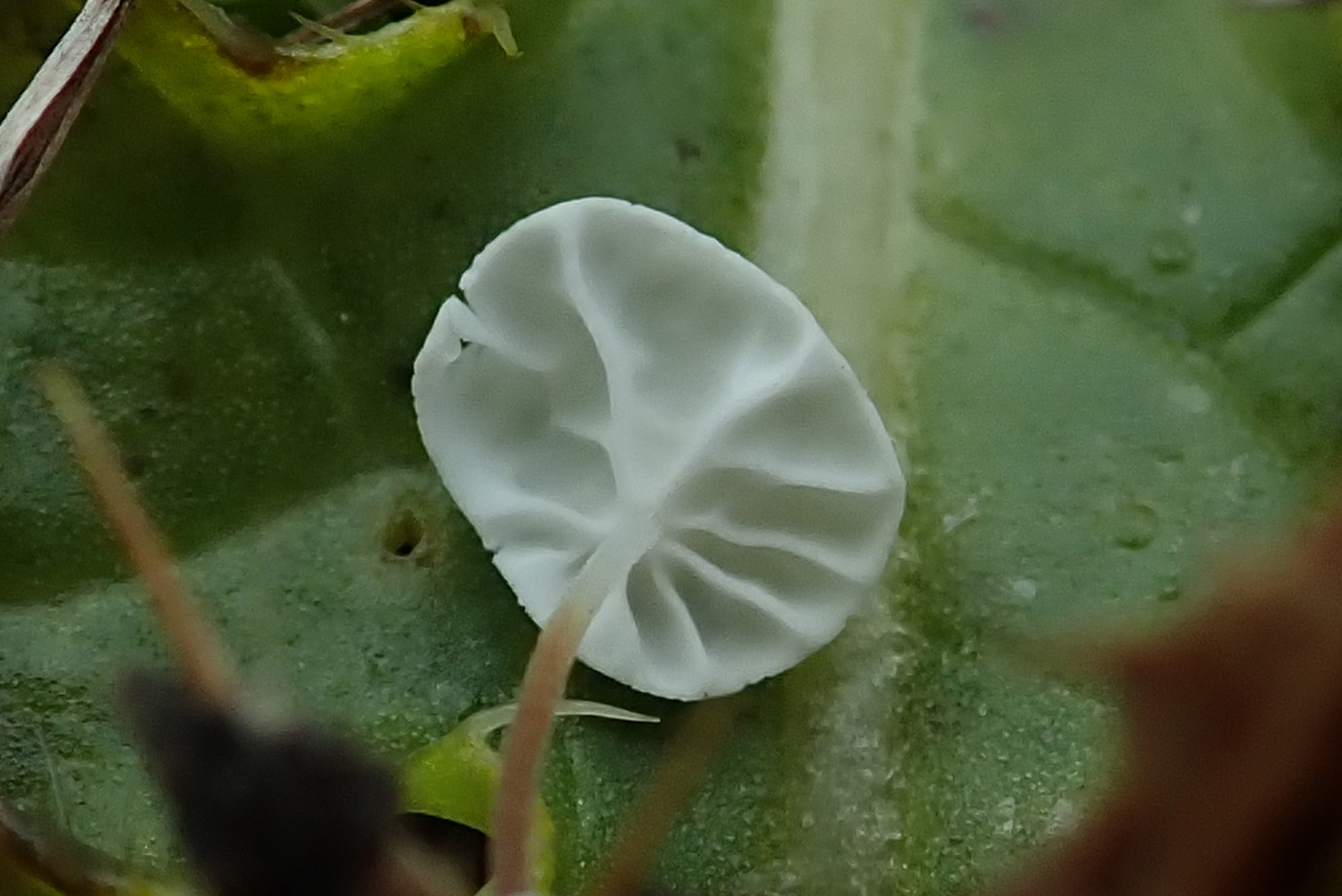
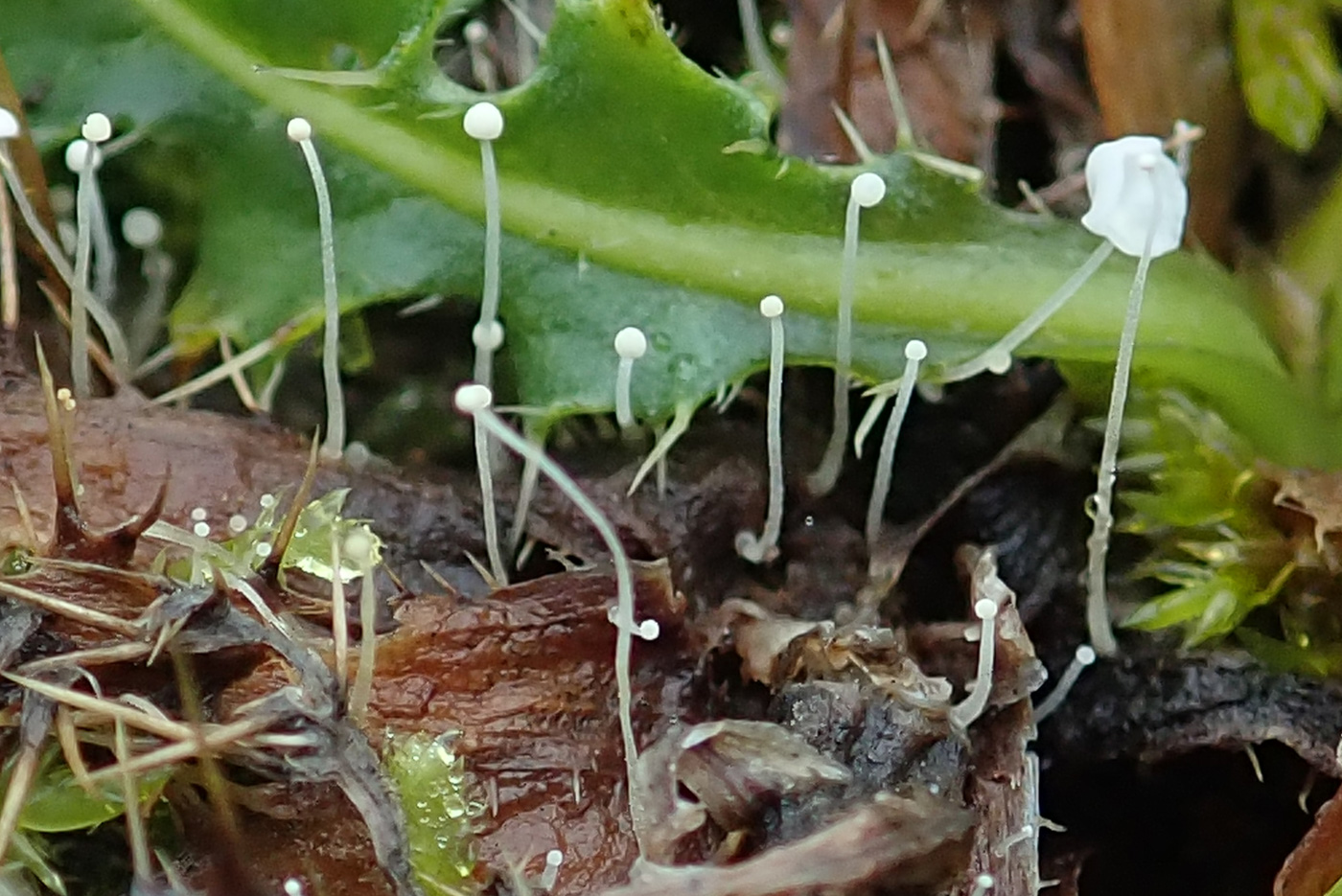 |
December 2nd Marasmius epiphyllus (Leaf Parachute) 
Penny C. noticed this stunning collection of tiny white mushrooms growing on mossy vegetation in the Grangelands at Pulpit Hill. We have a previous photo dated Nov 09 but this collection was rather different in that it was not in woodland so unlikely to be on the leaf of a tree, also it had far fewer gills which are clearly less developed (see detailed photo to compare with that for Nov 09). However, when keying it out there seemed no alternative species, the microscopic characters fitted and it appears that the species is very variable. One more collection for sequencing!
|
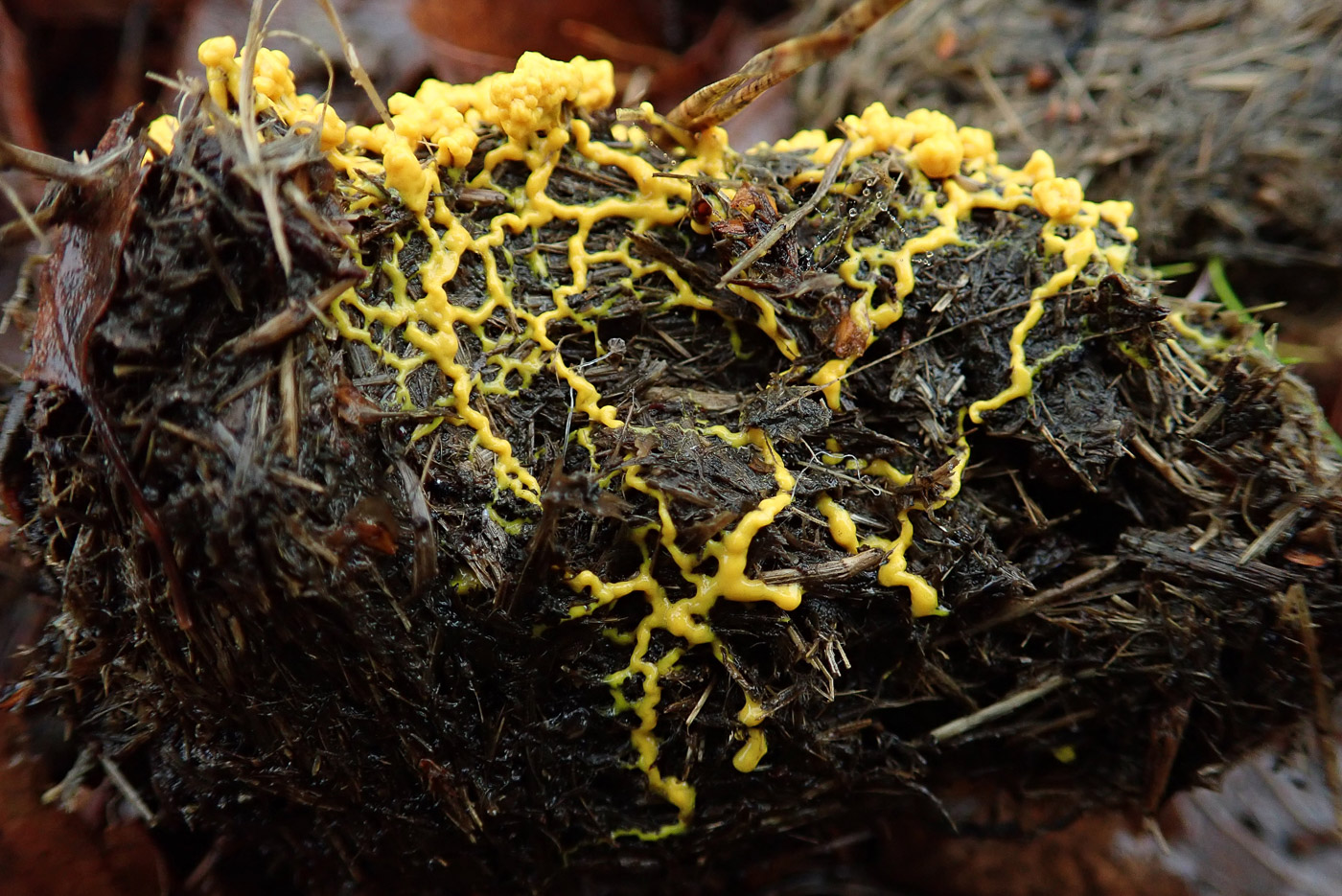
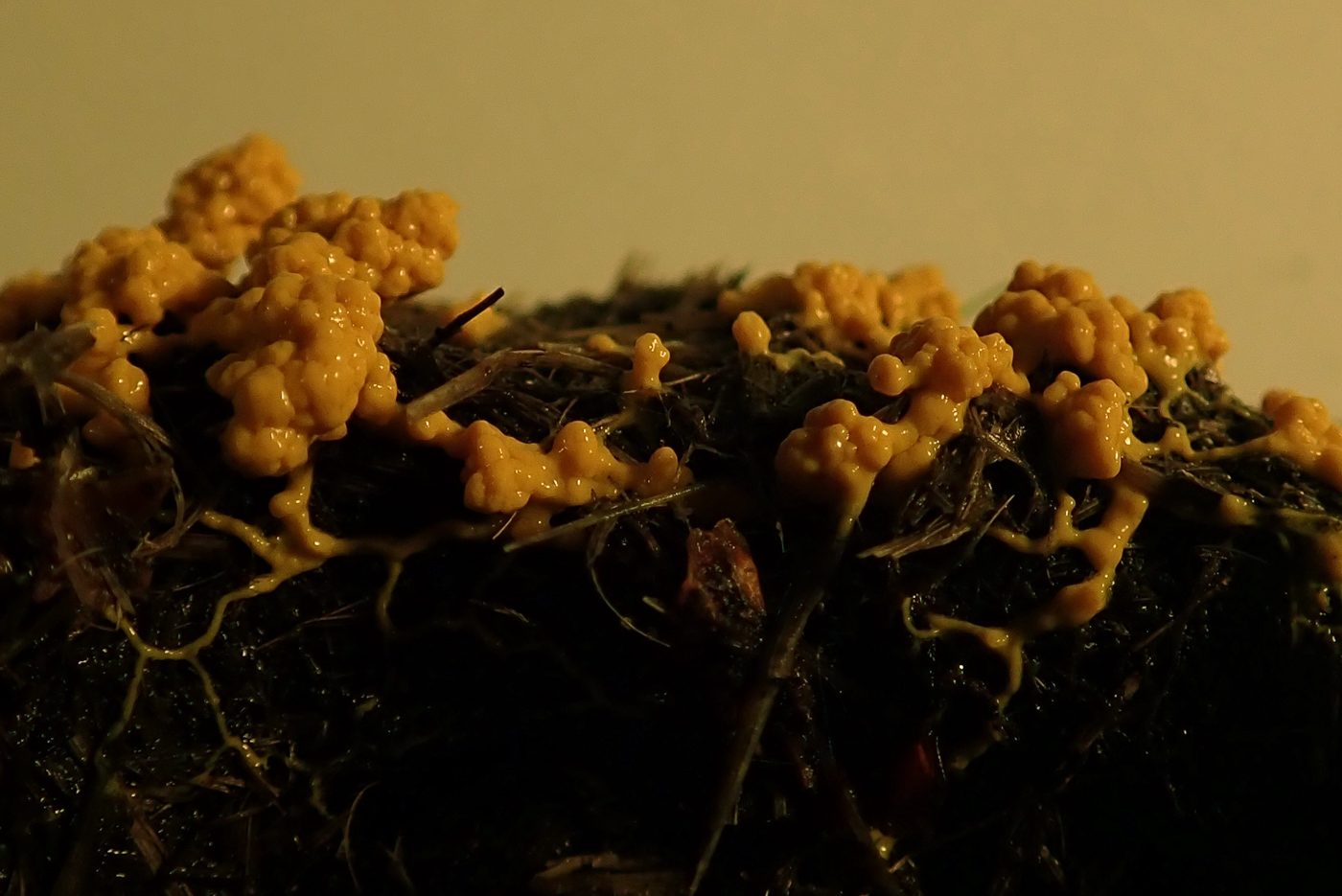
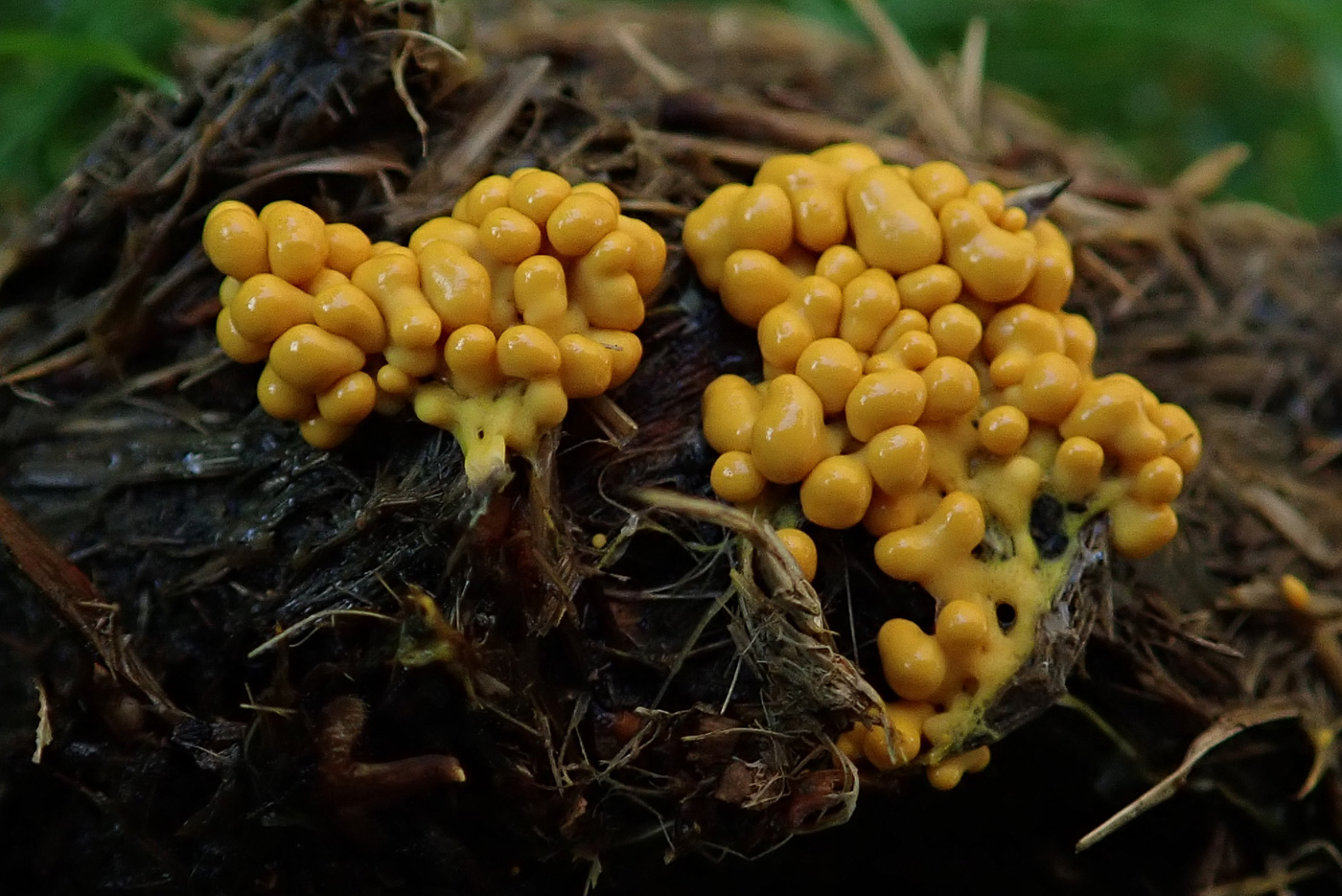
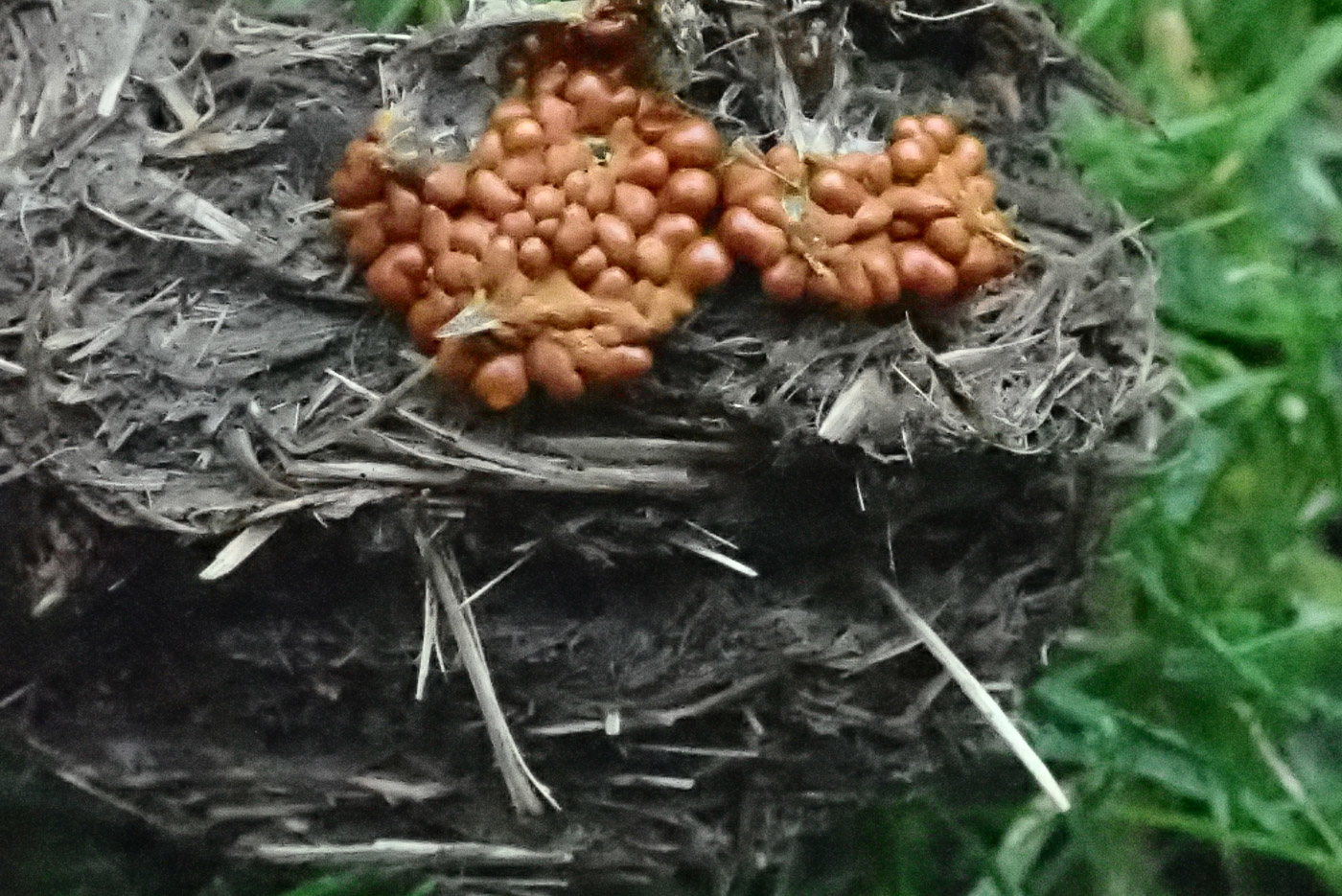 |
December 2nd Leocarpus fragilis (a Slime Mould with no common name) 
Penny C. collected this bright mustard yellow mobile plasmodium spreading over a piece of pony dung in the Mire at Burnham Beeches a couple of days earlier, took photo 1 then collected it in the hope of watching its development. That evening it had settled down and was taking some shape (photo 2) and the following day a definite shape to each fruitbody was visible. It took another day to become the typical shiny chestnut brown of this quite common species and reach the stage at which one can check microscopic features to confirm. An amazing transformation! (Apologies for the lack of focus especially on the final photo!)
|
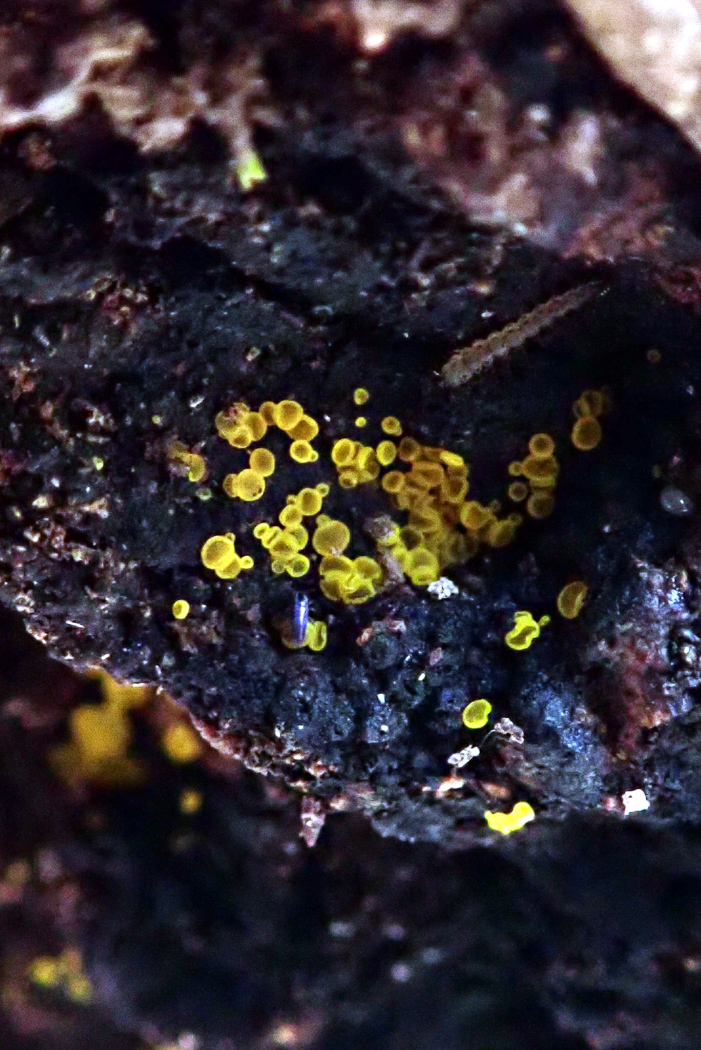
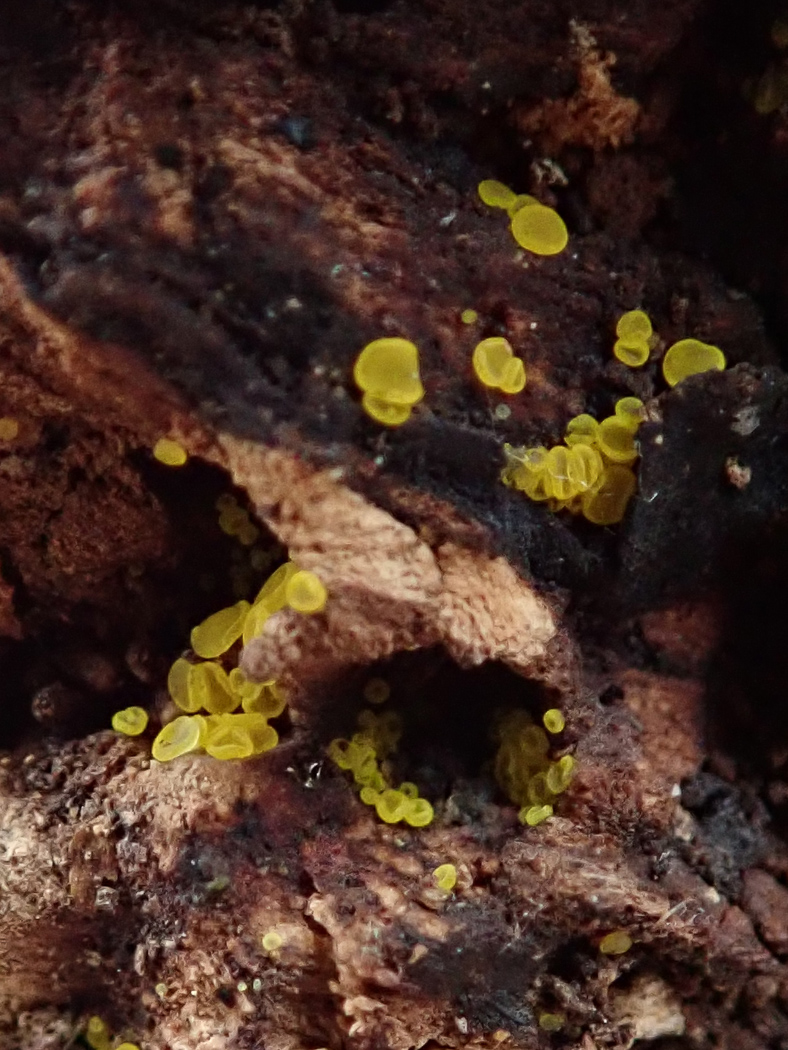 |
December 2nd Bisporella sulfurina (Sulphur Disco) 
On a rotting Beech stump in Pulpit Hill Penny C. noticed these tiny bright yellow discs. Each disc was under 1mm across - smaller than the much more common B. citrina (Lemon Disco - see photo dated Sept 11) and the species grows on old Pyrenomycetes (black crusty Ascos) rather than directly on wood as the commoner species. In photo 1 the black substrate is obvious.
|
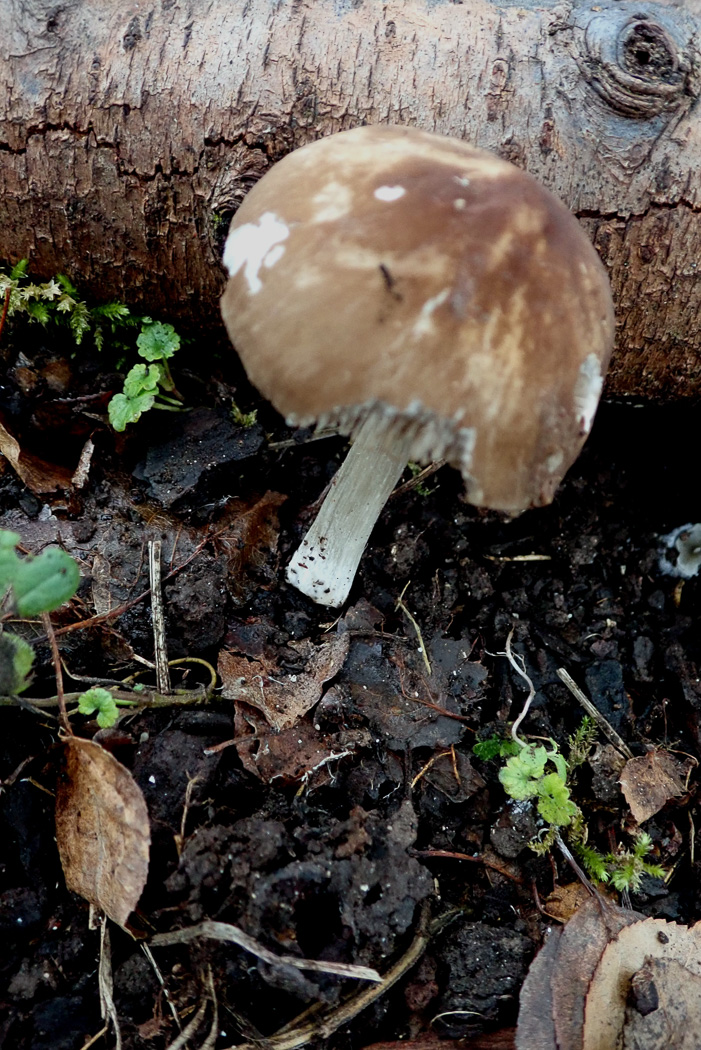
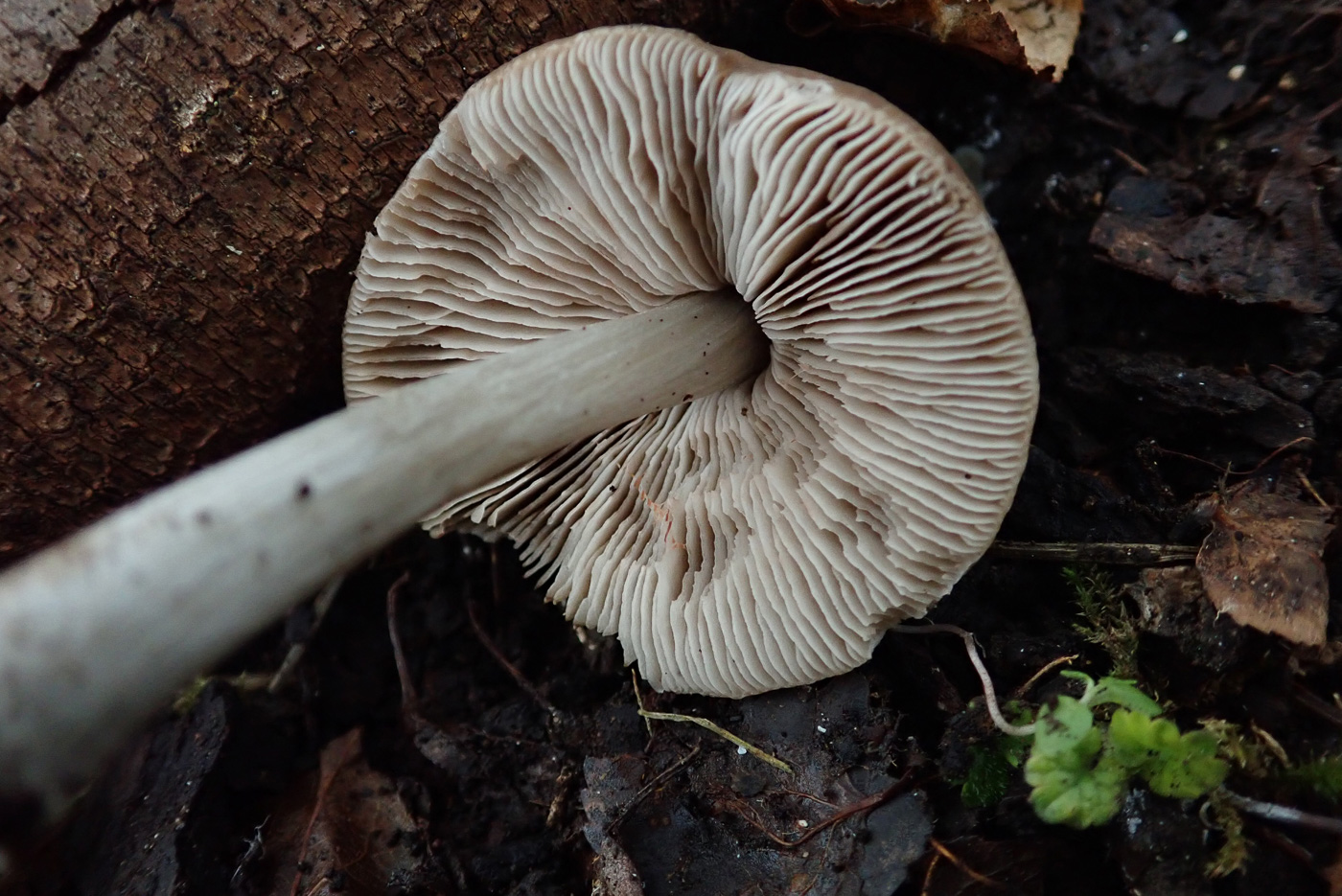 |
December 2nd Pluteus ephebeus (a Shield with no common name) 
Under a large Hawthorn in the Grangelands at Pulpit Hill Penny C. found this medium sized Pluteus in soil but adjacent to a fallen branch. The gills were hardly pink, more beige, but otherwise it was similar to the common P. cervinus, but at home a scope revealed that it was clearly not that species and keyed out fairly straightforwardly to P. ephebeus, an occasional species, new to our list and to the site but with 9 previous county records.
|
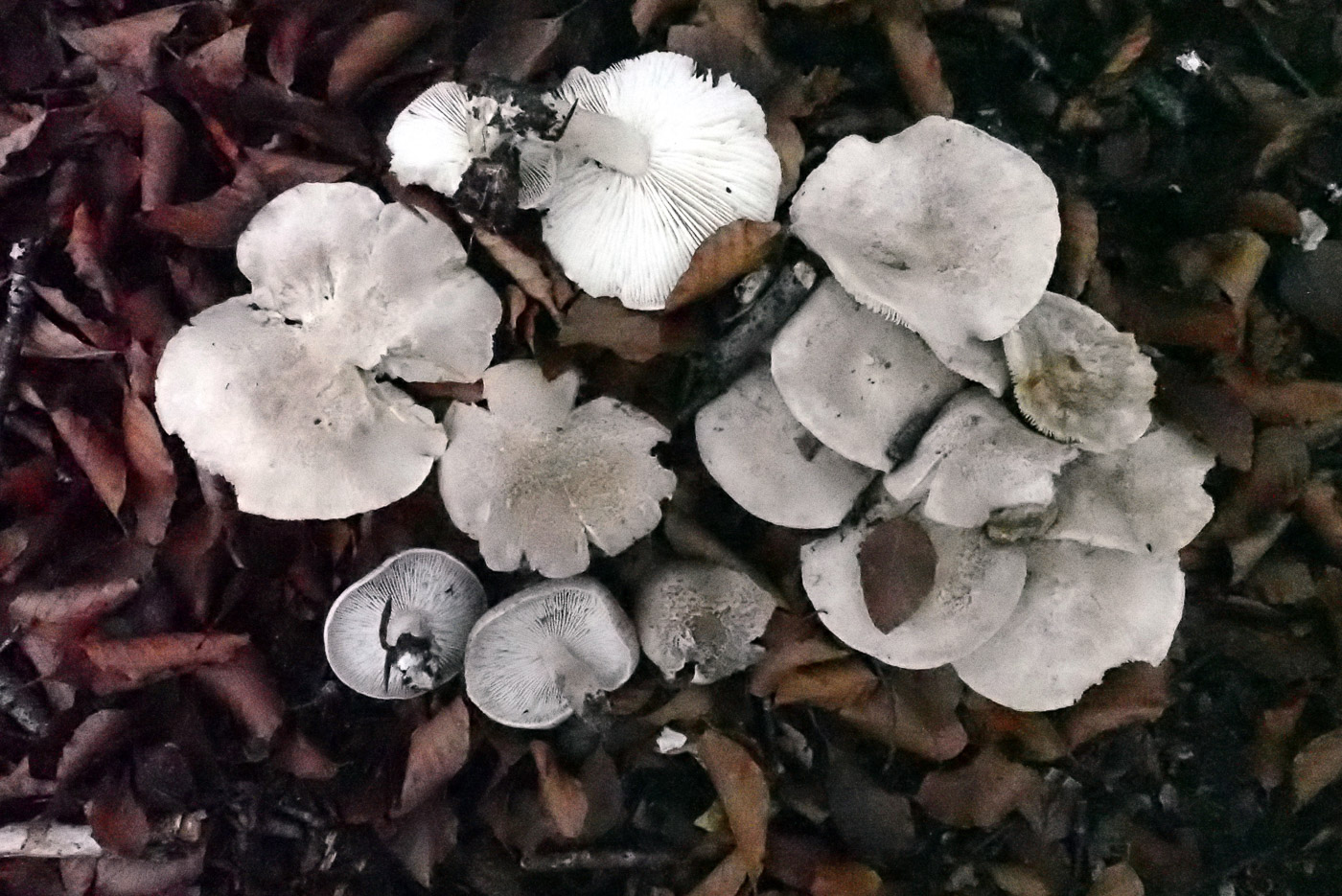
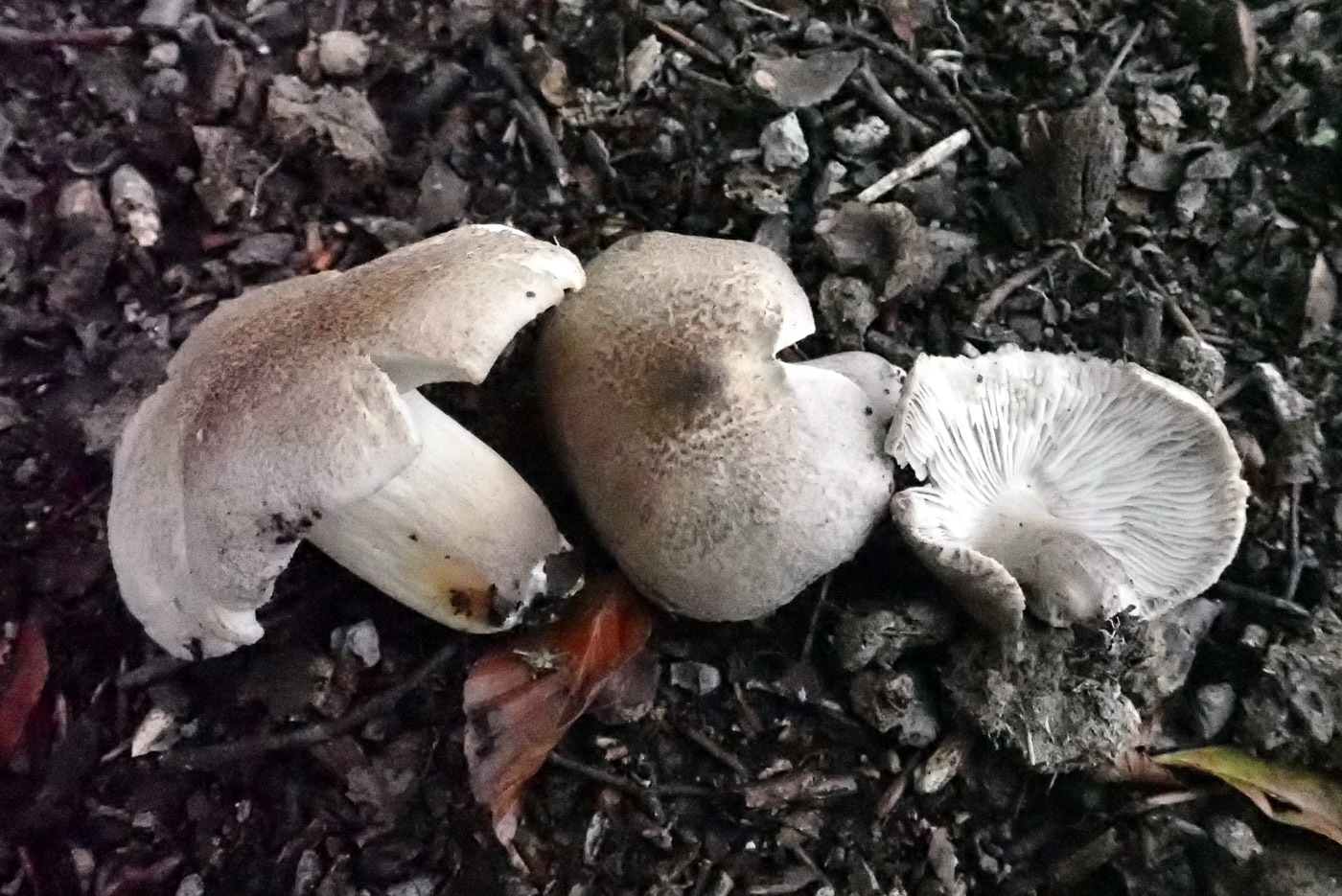 |
December 2nd Tricholoma scalpturatum (Yellowing Knight)
Under a large Beech at Pulpit Hill Penny C. was surprised to find a collection of this mushroom in such good fresh condition. We do have a previous photo (dated Nov 05) but this seemed worthy of inclusion and shows that not all the larger agarics have now stopped fruiting. This collection doesn't show the typical yellowing with age of this species but there was a rotting specimen nearby which was entirely yellow!
|
November 30th 2020
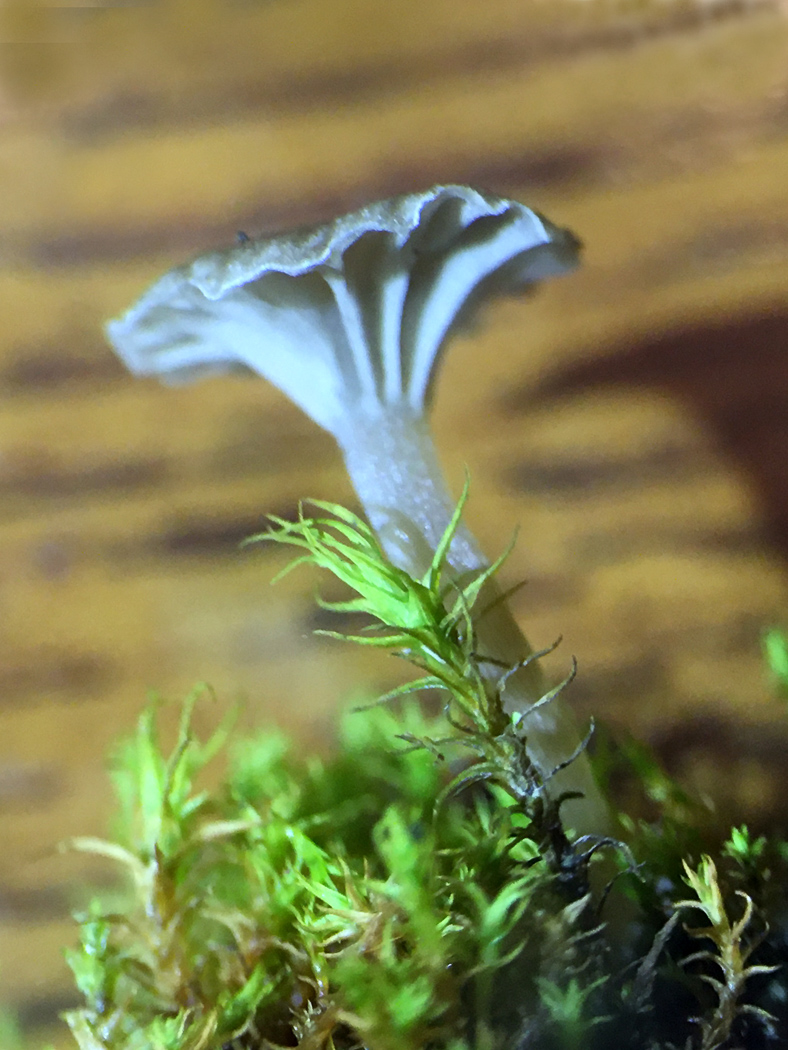
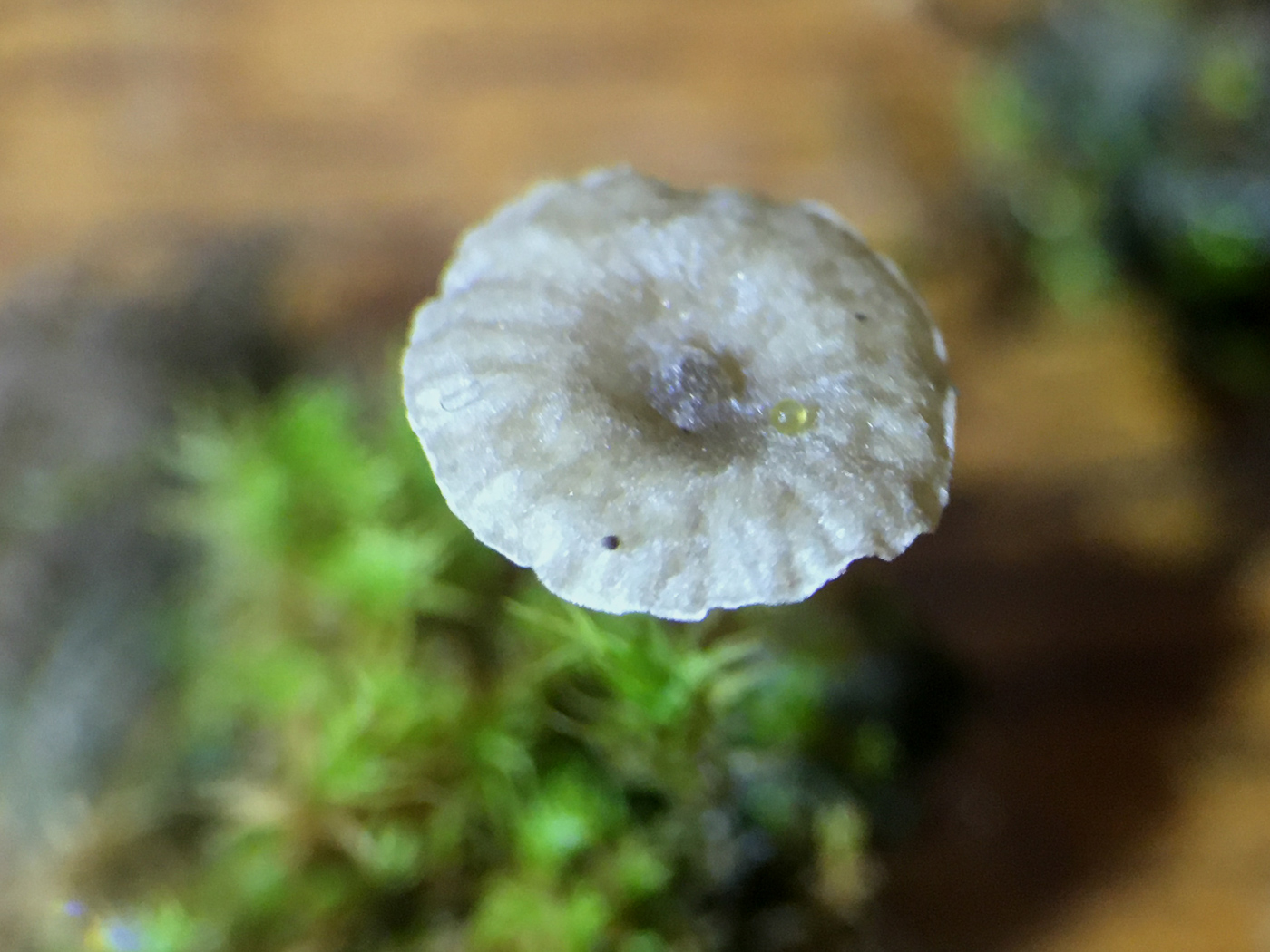
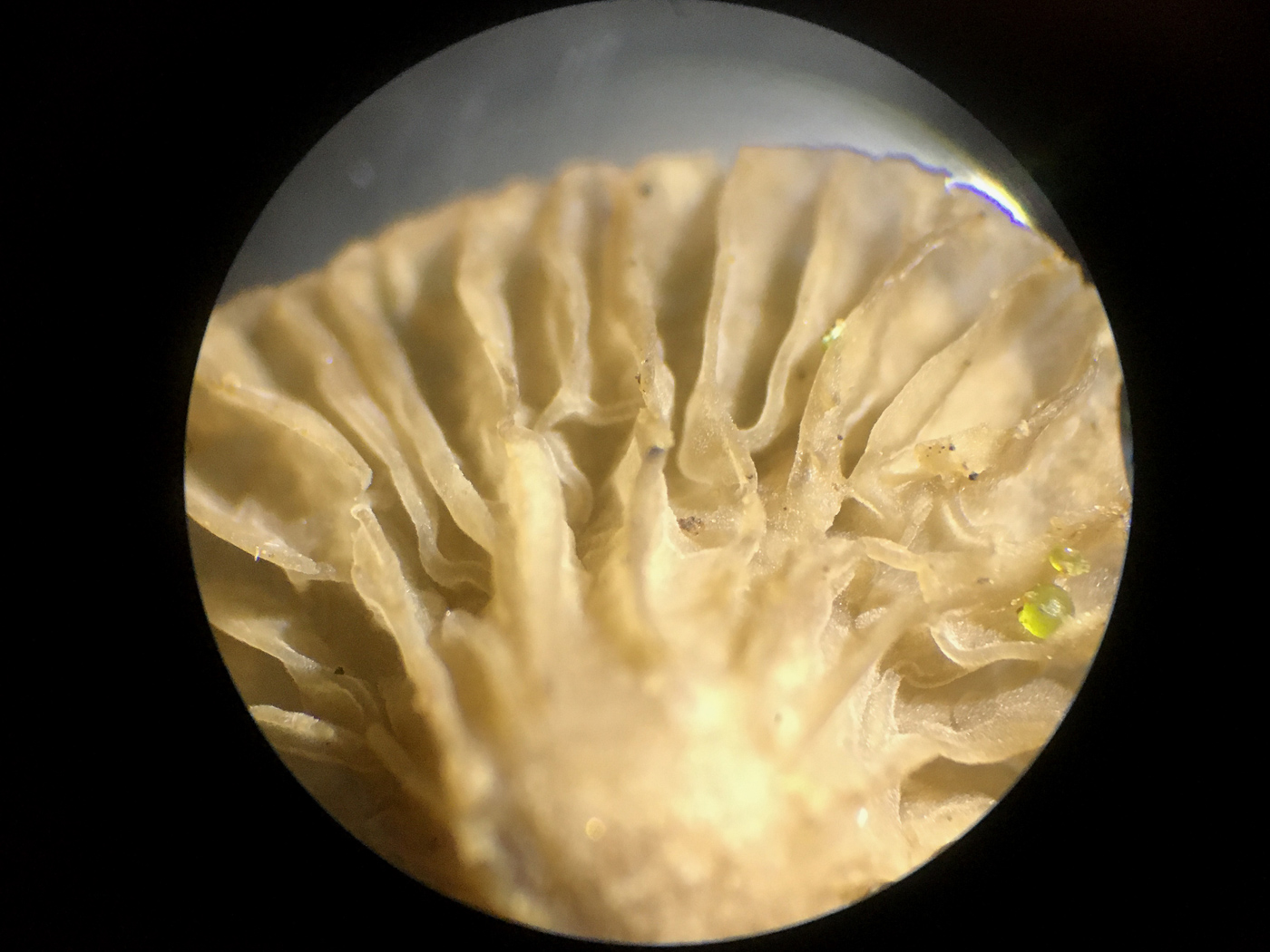 |
November 30th Arrhenia cf rickenii (a fungus with no common name) 
Russell Ness found this tiny and rare Omphaloid mushroom amongst moss alongside the Jubilee River in Dorney. When keying it out, however, he found the spore shape and size fell between two rather similar species and that some features matched one better, some features the other! On balance we've decided upon the less rare of the two but are leaving this as cf rickenii until the dried specimen can be sequenced to tell us more accurately what it is. Whatever it is, it will be an exciting new record for the county.
|
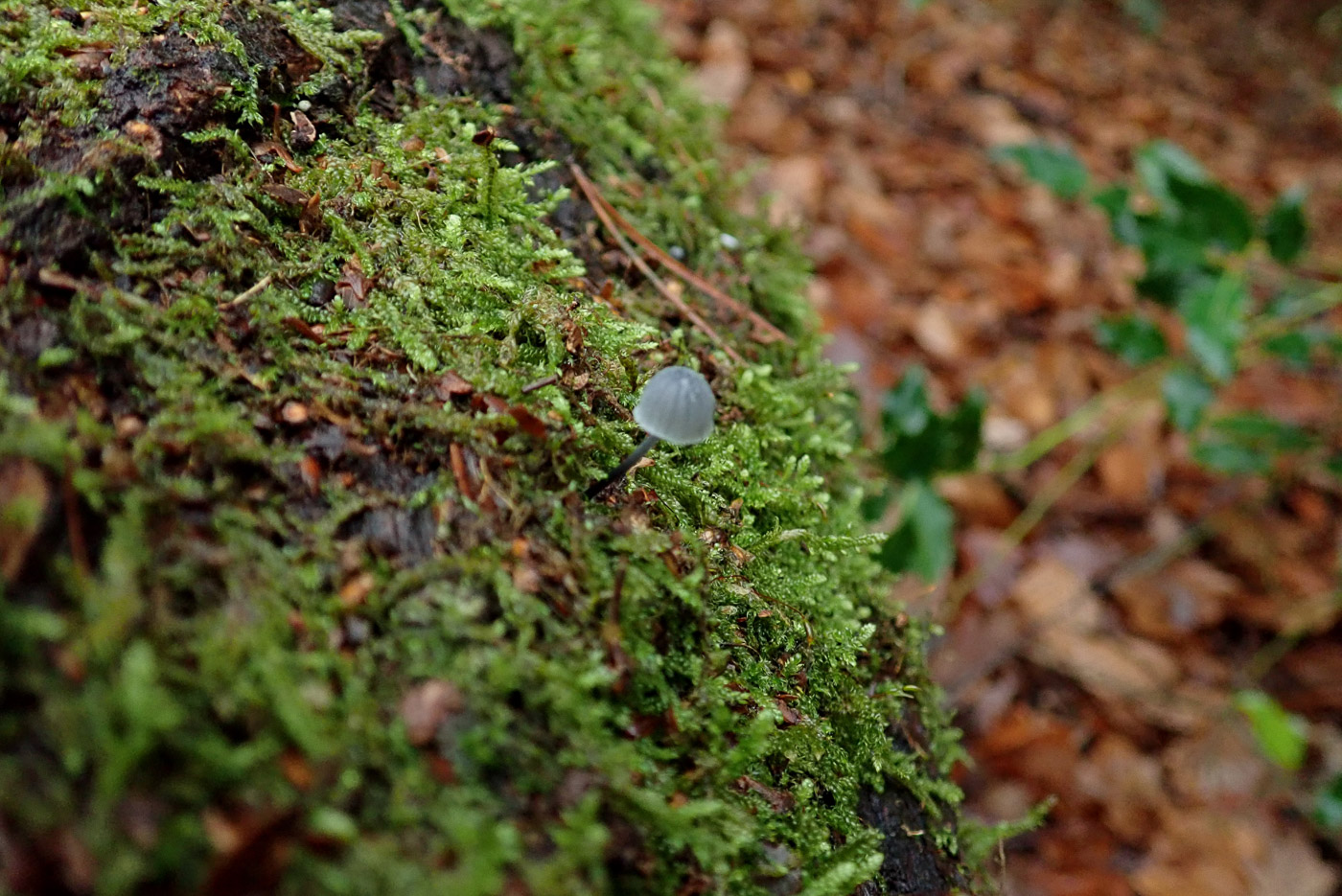
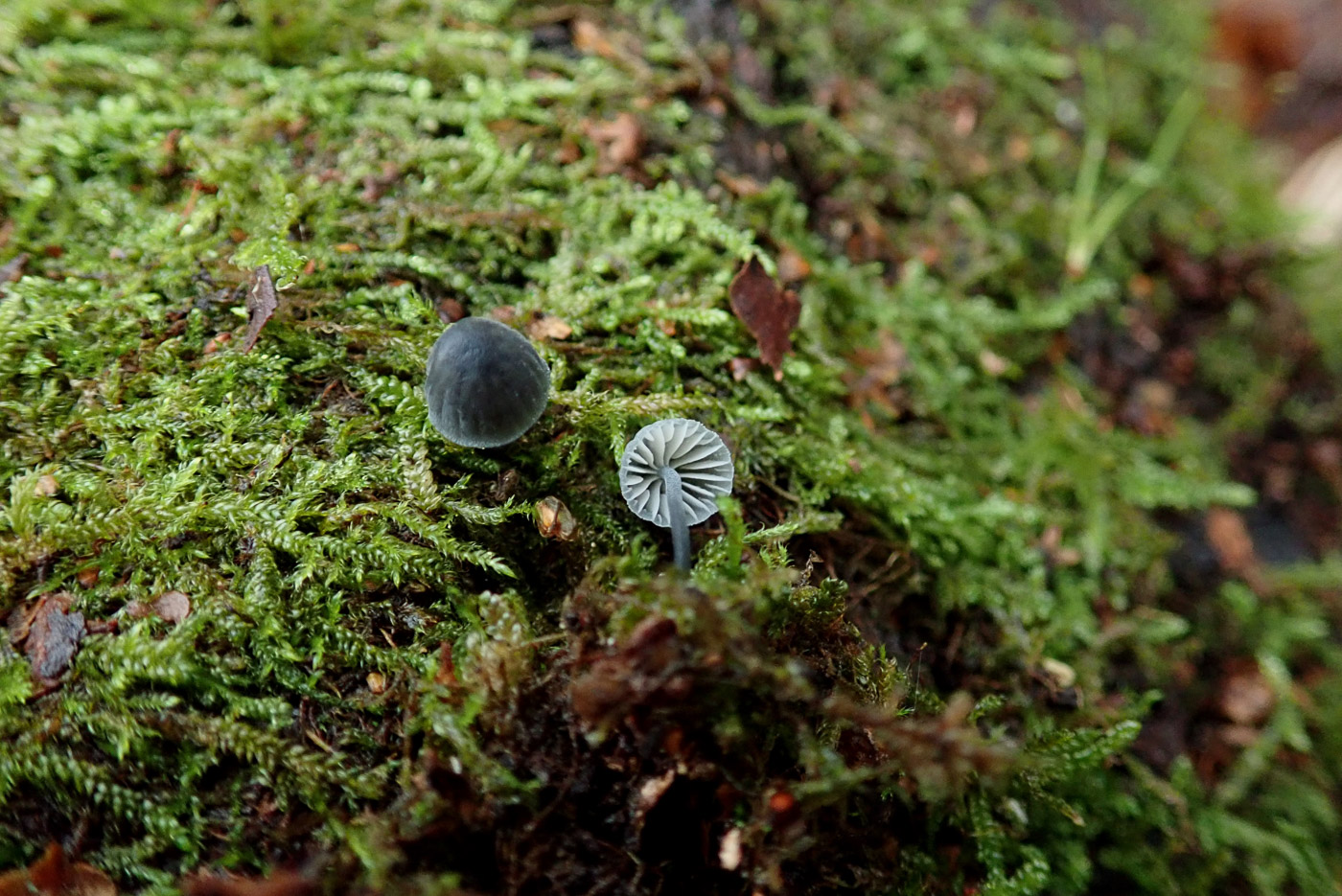 |
November 30th Mycena pseudocorticola (A Bonnet with no common name) 
Every time Penny C. has visited the Burnham Beeches Mire this autumn she's checked a certain very mossy fallen Willow where last year we found this stunning little blue Mycena when it was new to the site. At last today she was rewarded and found just two tiny but perfect specimens! We have a handful of county records but this is not a common species, apparently often fruiting late in the season, and always a delight to find. Caps are only 1 cm across at most, often much smaller than this as today, and stems are grey blue as well though with age the colour tends to fade.
|
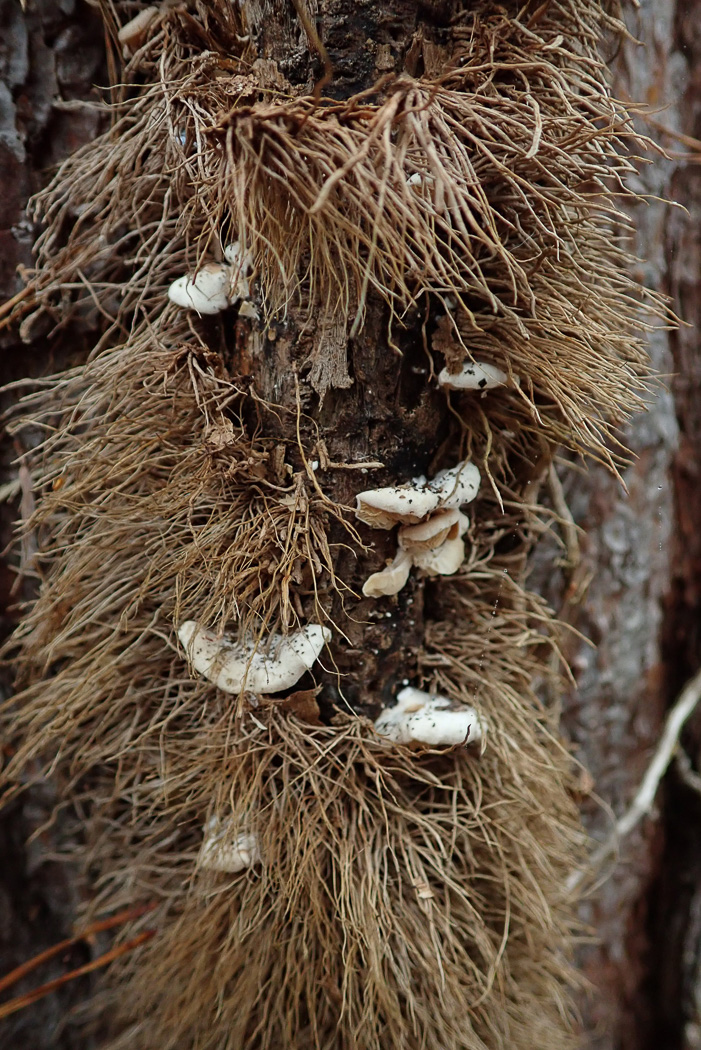
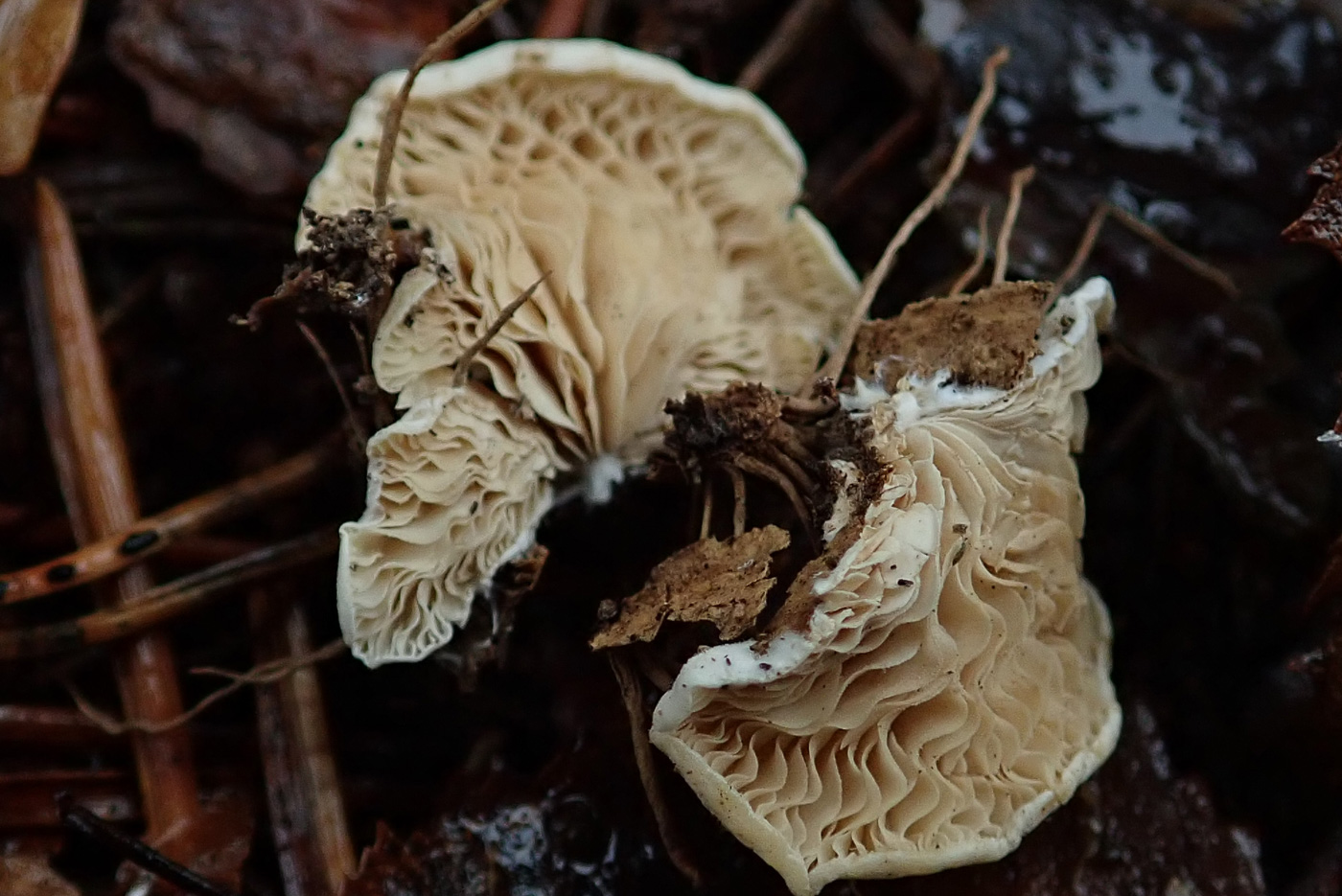 |
November 30th Clitopilus hobsonii (Miller's Oysterling) 
Penny C. noticed these small 'Crepidotus' -like white caps in tiers at head height on the thick stem of a dead Ivy clinging to a large Pine in the Mire in Burnham Beeches. They were unfortunately very dry and past their sell-by date but the unusual substrate suggested they might be something interesting. They had semicircular caps with no stem and pink gills which lacked a hint of rust as would be found in Crepidotus. At home the spores revealed the genus straight away: they were faintly ribbed as in the common Clitopilus prunulus (Miller) though that species has a central stem, strongly decurrent pink gills and grows in grassy path edges (see photo dated Sept 07). This is an uncommon species (though maybe often missed and mistaken for Crepidotus?); we have quite a few county records, however, though only one for Burnham Beeches back in 2004.
|
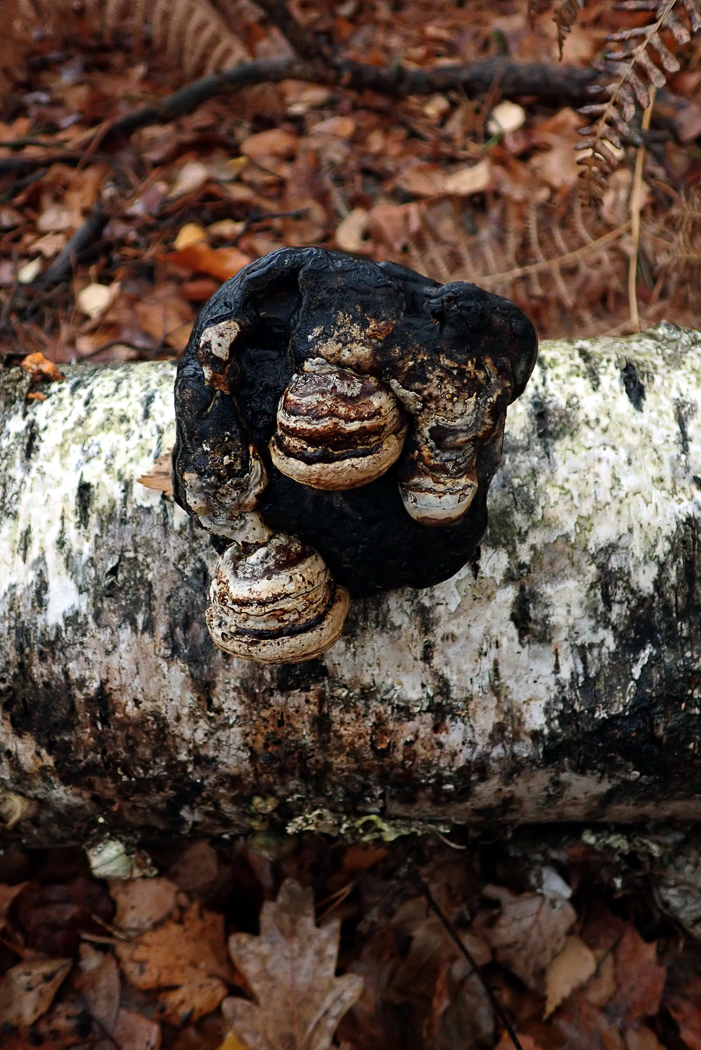 |
November 30th Fomes fomentarius Fomes fomentarius
We have this rare and interesting bracket already (dated Sept 15) - see notes under that species for more comments. Today's specimen on fallen Birch in the Mire in Burnham Beeches, found by Penny C., was notable because of the new small 'hooves' which were forming at right angles on the underside (the old pores) of a previous year's bracket. However, even when this small - not more than 3 cms across - the distinct 'hoof' shape is clear to see.
|
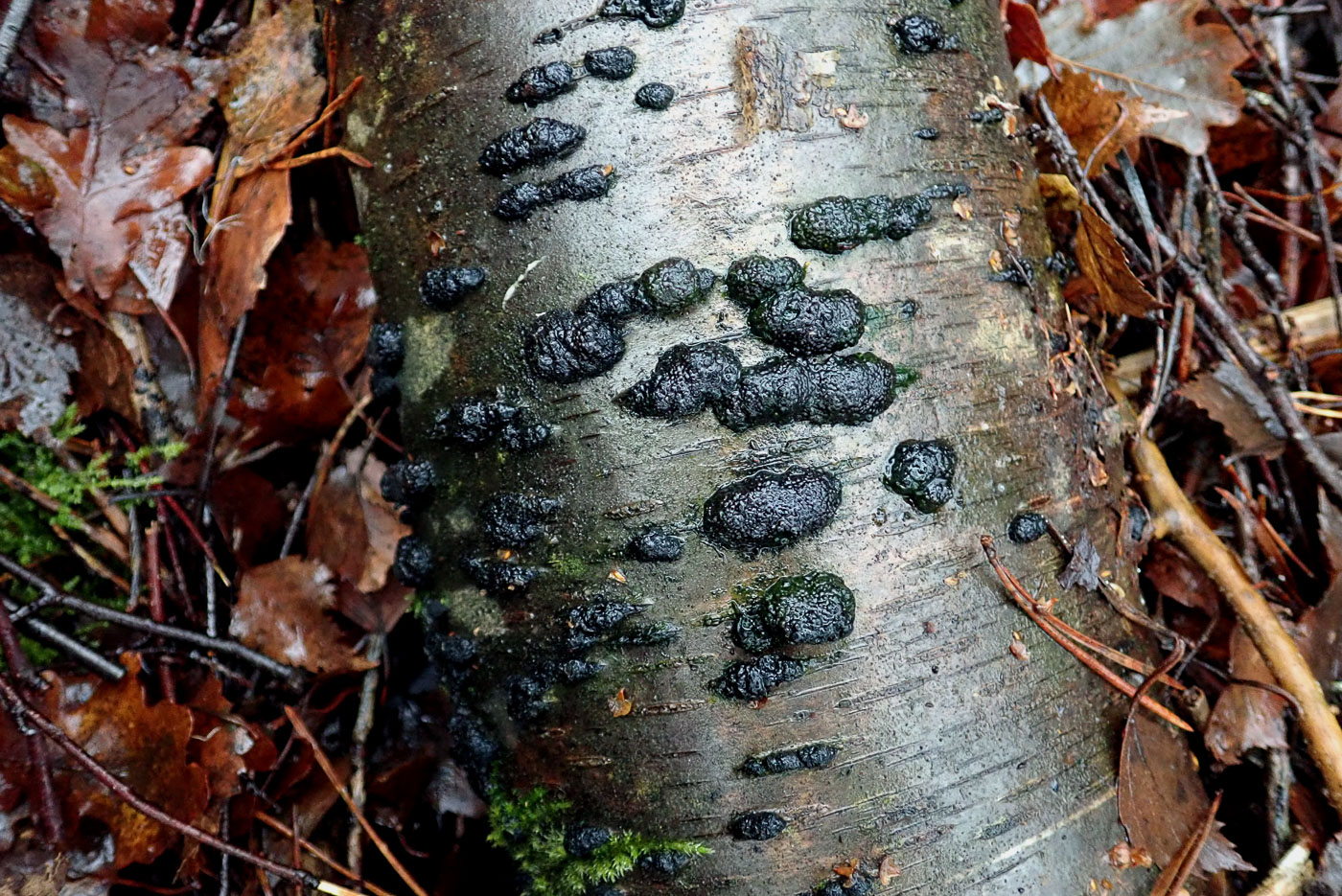 |
November 30th Hypoxylon multiforme (Birch Woodwart)
It seems odd that this very common species has been missing from our list, but today in the Mire at Burnham Beeches it turned up on a fallen Birch trunk, found by Penny C. It can be separated in the field from other similar Woodwarts by (a) its occurrence on fallen Birch and (b) its shape: mainly cylindrical rather than round and typically in lines as seen here.
|
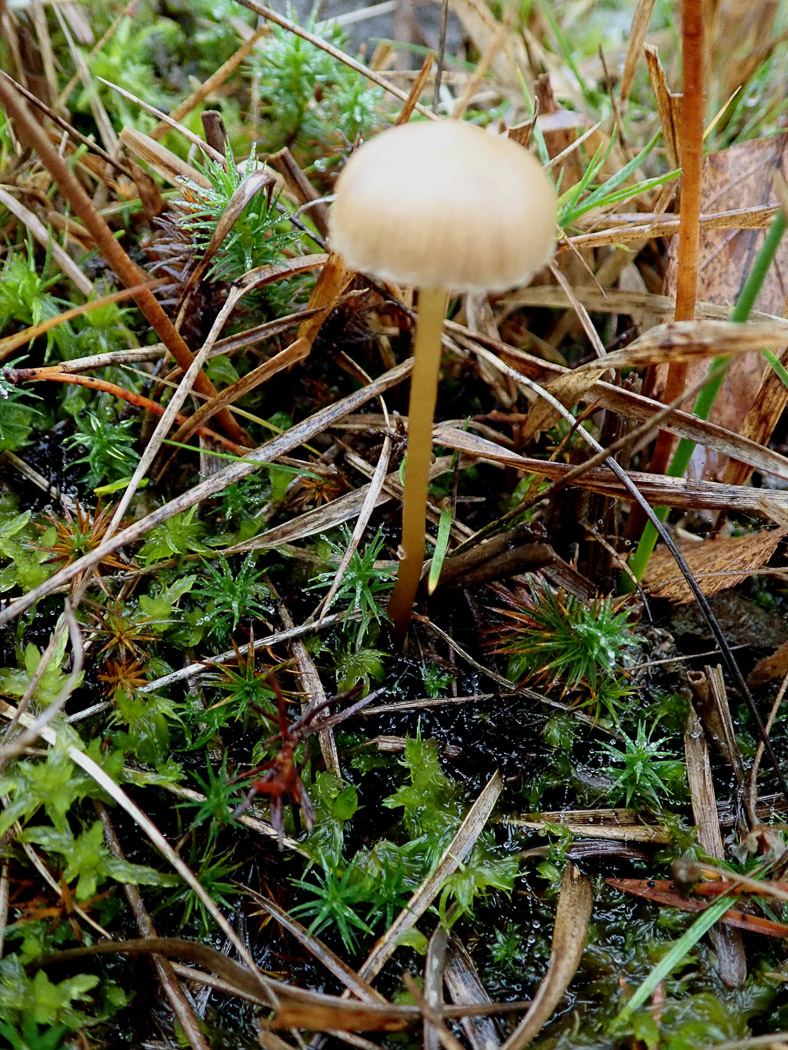
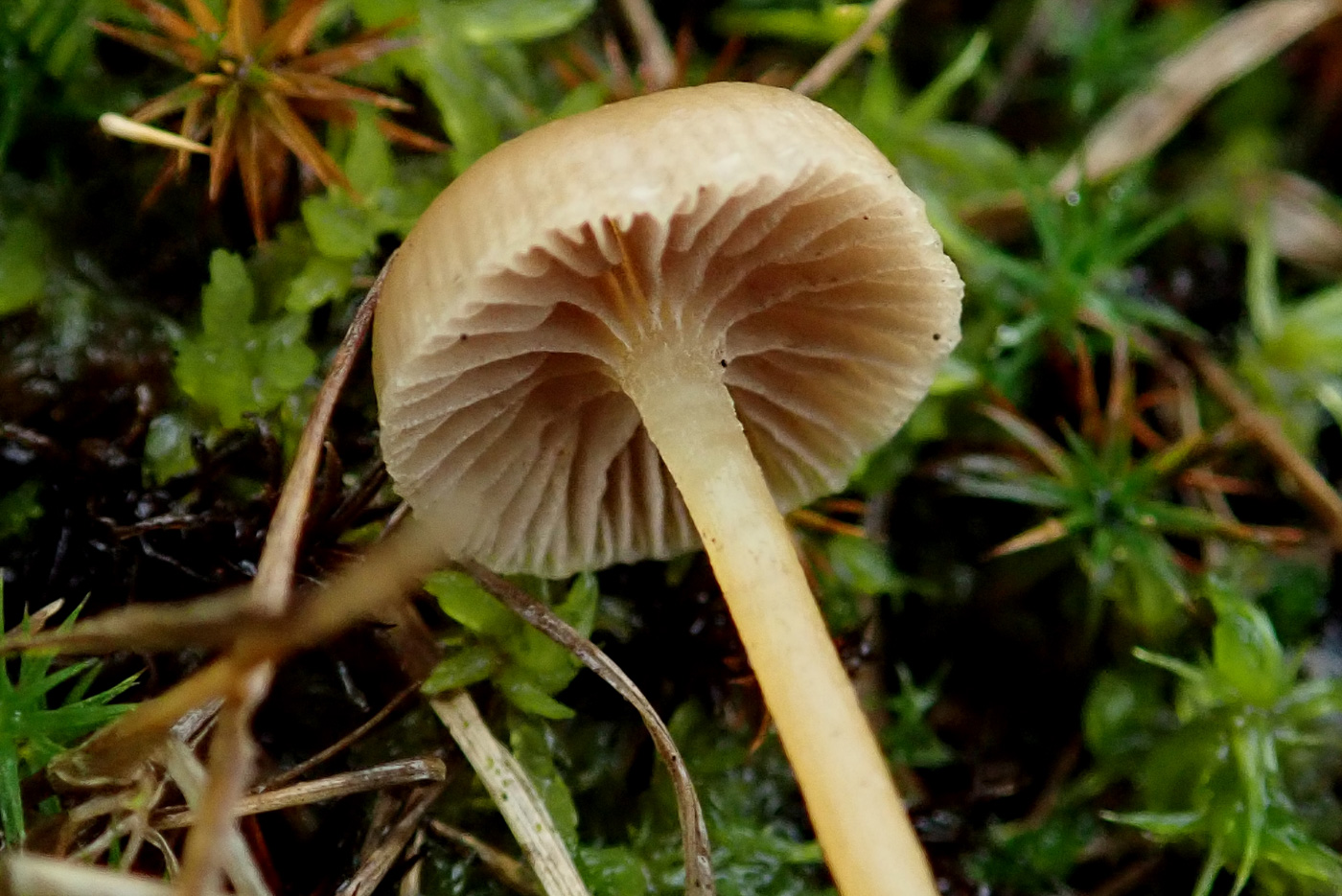 |
November 30th Hypholoma elongatum (Sphagnum Brownie) 
Growing in Sphagnum in the Mire in Burnham Beeches, Penny C. found this singleton - a typical fairly nondescript LBJ. At first glance it could have been a species of perhaps Conocybe, Tubaria - something like that, but the gills had a pinkish tinge and had a decurrent tooth (see photo 2) and the stem was distinctly yellowish and darker at the base. Furthermore the habitat in this area being somewhat unusual, it seemed likely that this would be something different. Under the scope the plentiful yellow cells on both the gill edge and flat surface left no doubt as to what this species was - in the same genus as the very common and familiar H. fasciculare (Suphurtuft) but certainly very different!
|
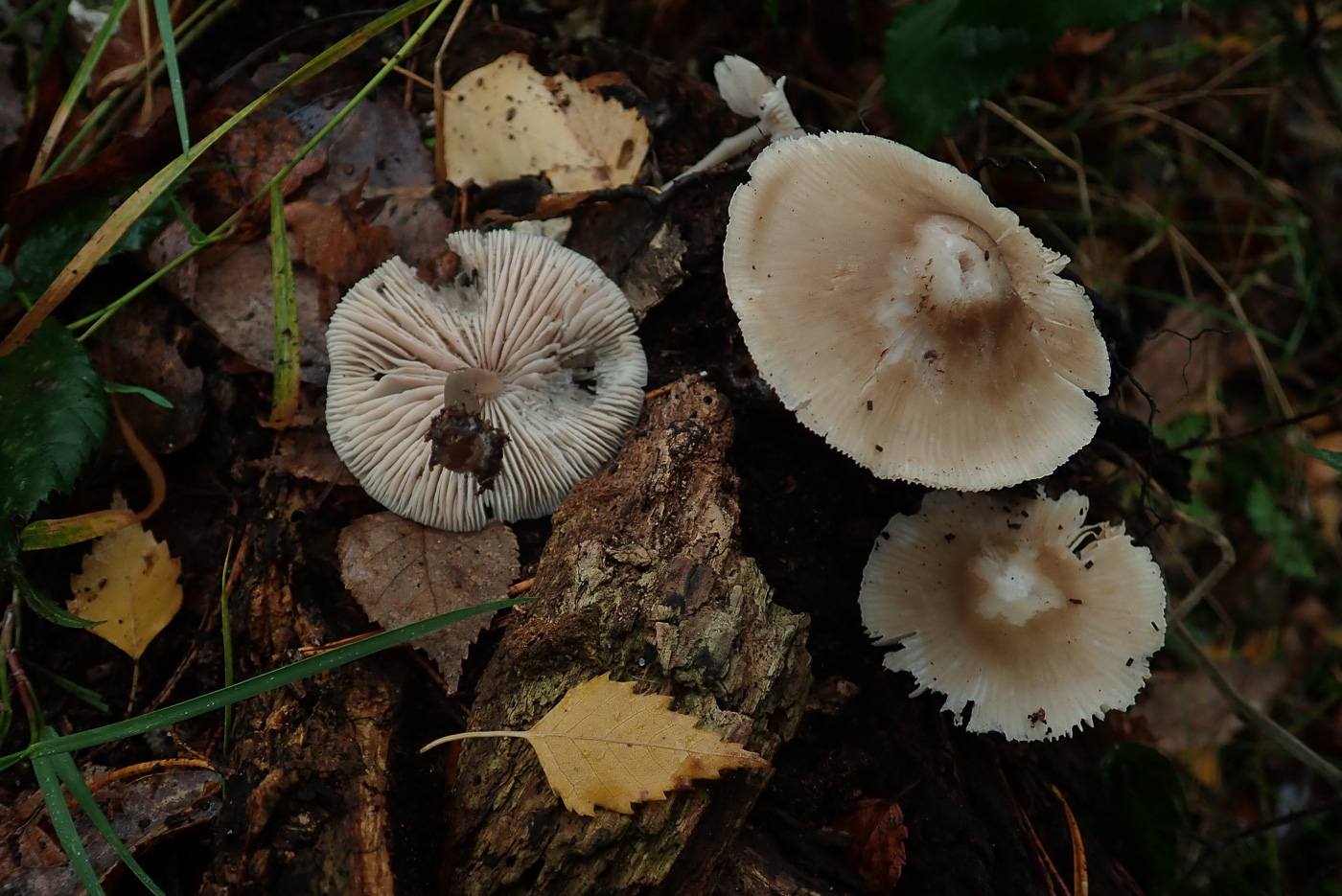
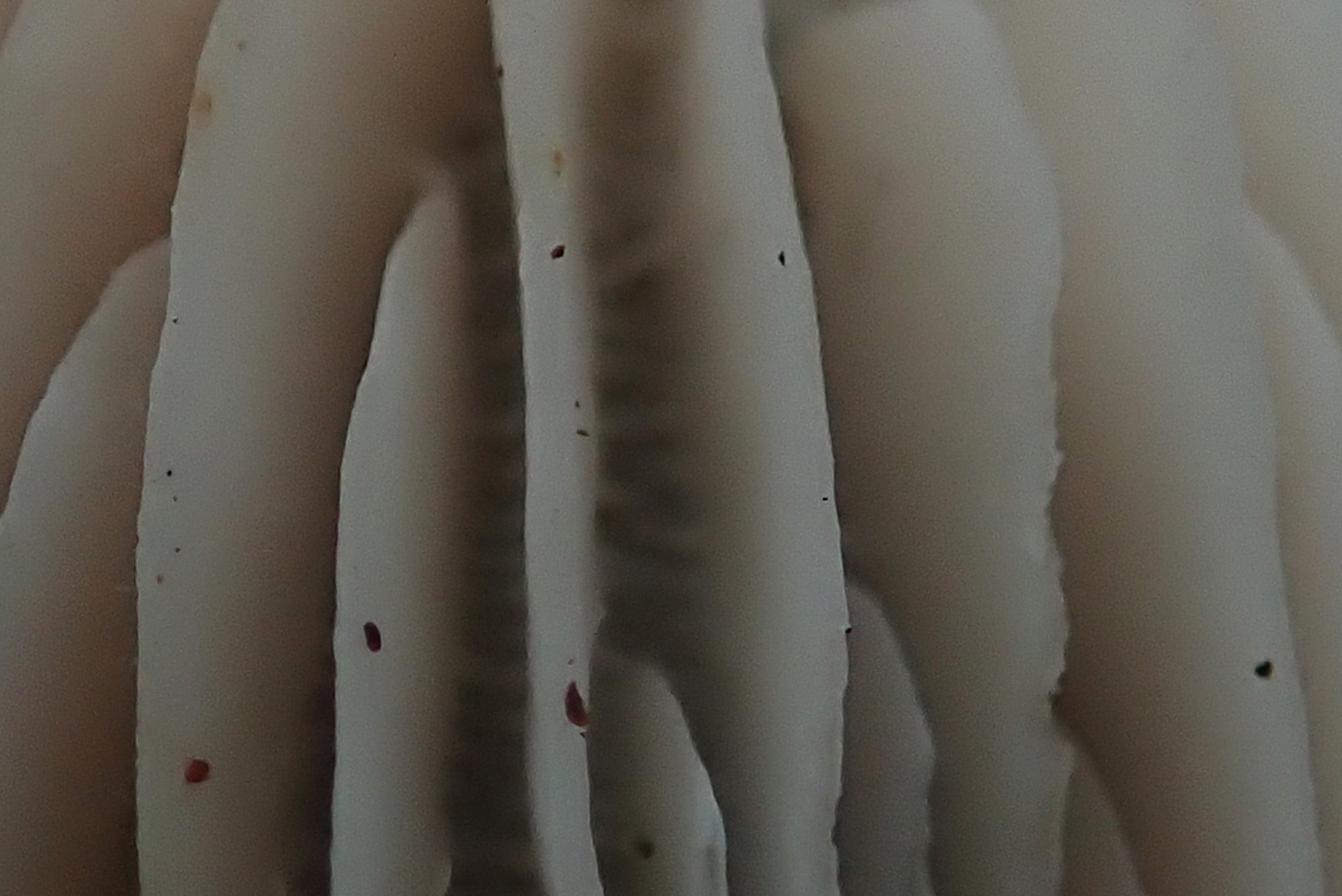 |
November 30th Mycena galericulata (Common Bonnet)
Penny C. took the opportunity to illustrate this common but large species of Bonnet since our only other photo is dated Sept 29 which seems a long time ago now. On fallen Birch in the Mire in Burnham Beeches the caps were a good 4 cm across (it can get much bigger than this), the gills were typically rather pink and it was very firmly rooting into the wood. Note in photo 2 the telltale cross-ribbing between the gills which - when one finds much smaller specimens therefore making it easy to confuse with other wood inhabiting Bonnets - is a very useful field feature.
|
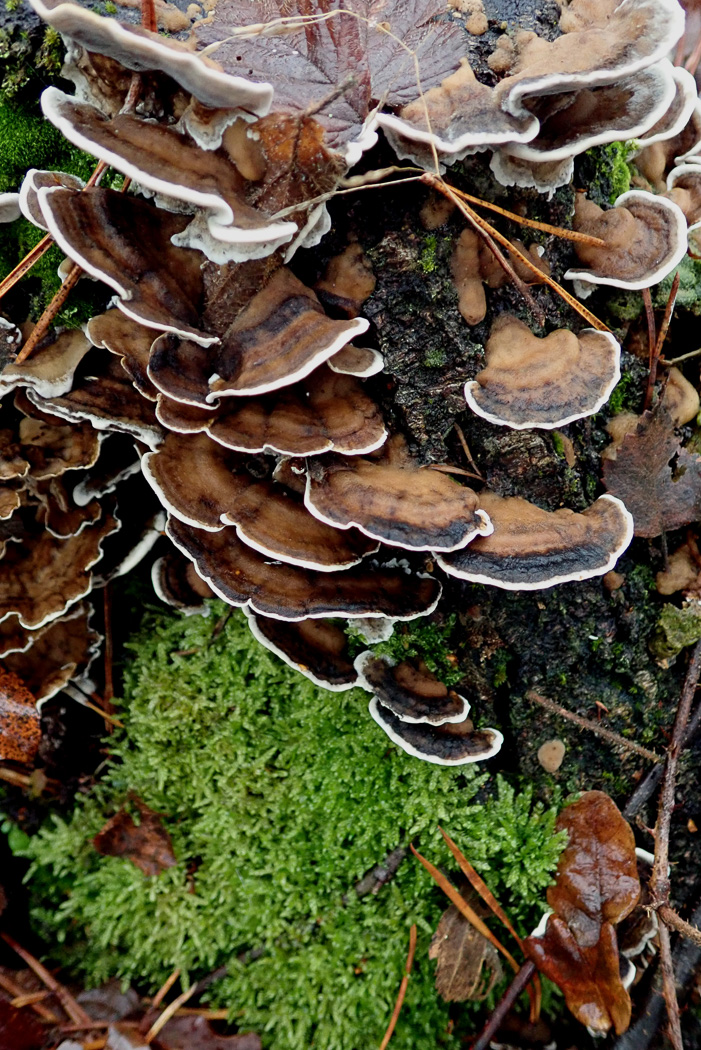
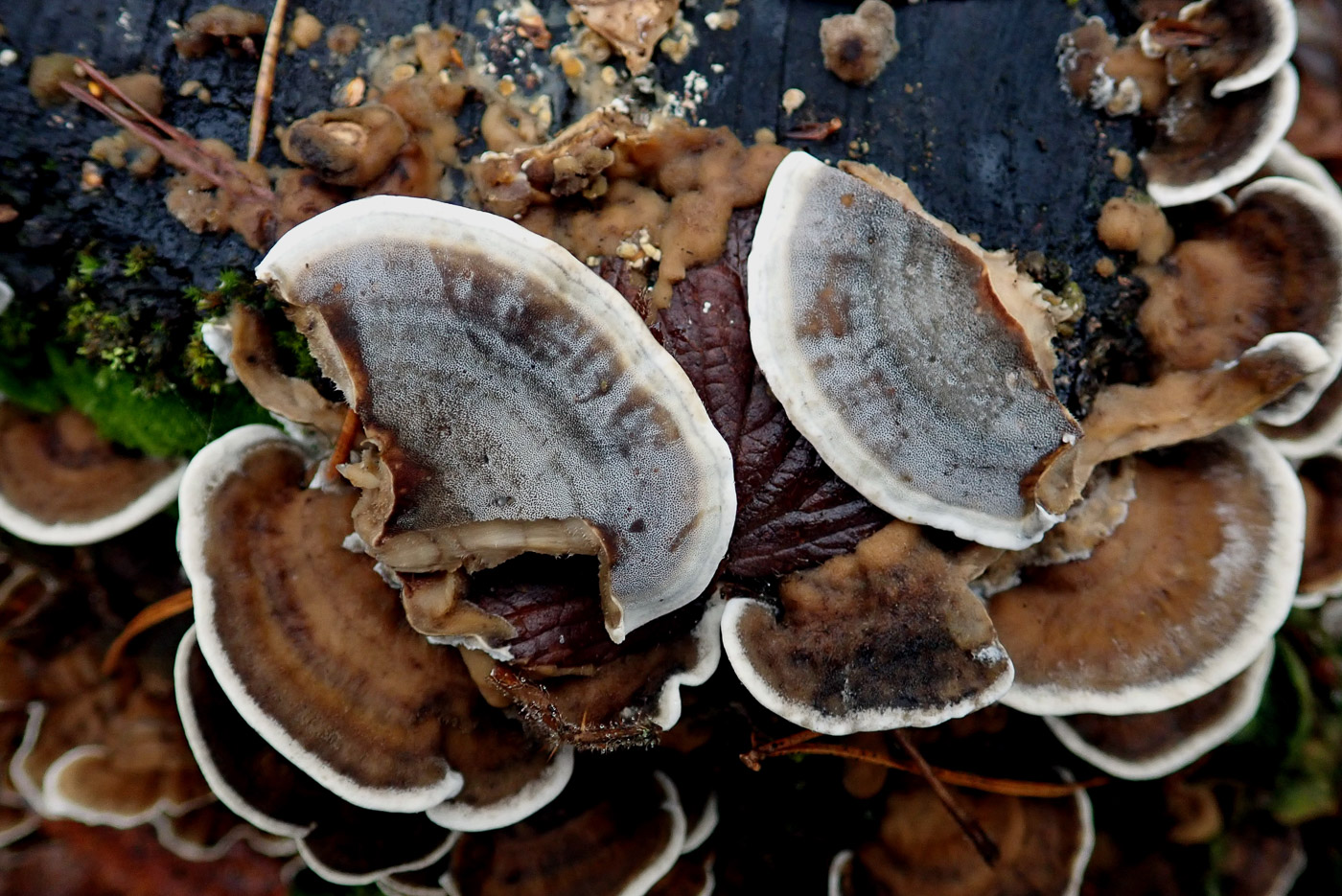 |
November 30th Bjerkandera adusta (Smokey Bracket)
On a Birch stump in the Mire at Burnham Beeches Penny C. found this attractive example of a common bracket though one which tends to be overlooked, being mistaken for the even more common Trametes versicolor. The zoning on the top is indeed quite similar to that species, but turn one over and the difference is very clear: greyish black and smooth with a white rim in 'BJ' as opposed to creamy white with distinct pores in Turkeytail. See also our earlier photo dated Oct 03.
|
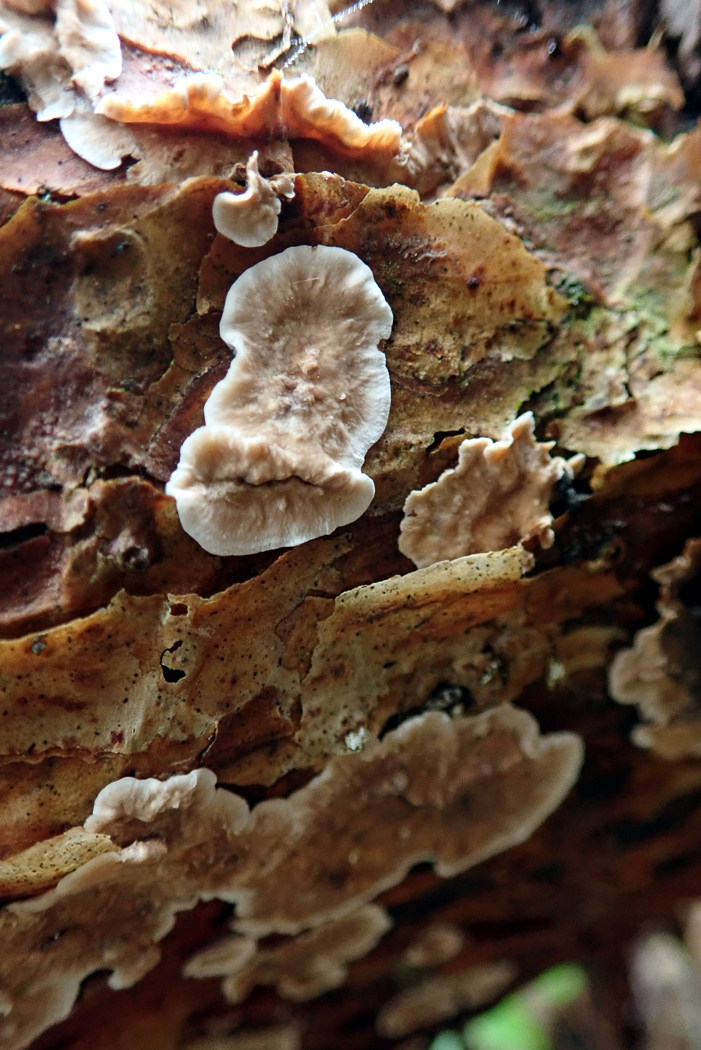
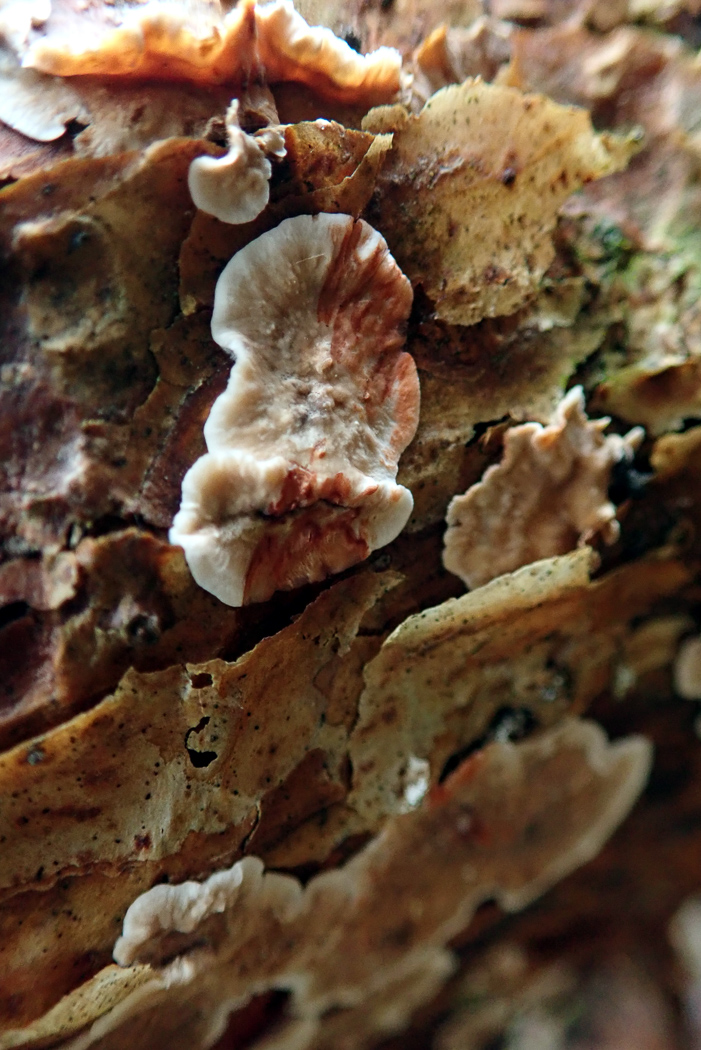 |
November 30th Stereum sanguinolentum (Bleeding Conifer Crust)
On a fallen Pine trunk in the Mire at Burnham Beeches Penny C. found a species she had been on the lookout for this season but had failed to find till now. This species of Stereum is similar to the two other reddening species (see also S. gausapatum dated Oct 11 and S. rugosum dated Nov 15) but is the only one found on conifer - both the other are found on deciduous wood. S. sanguinolentum tends to bleed very readily when scratched as can be seen in the before and after photos taken only seconds apart! All three species are quite common.
|
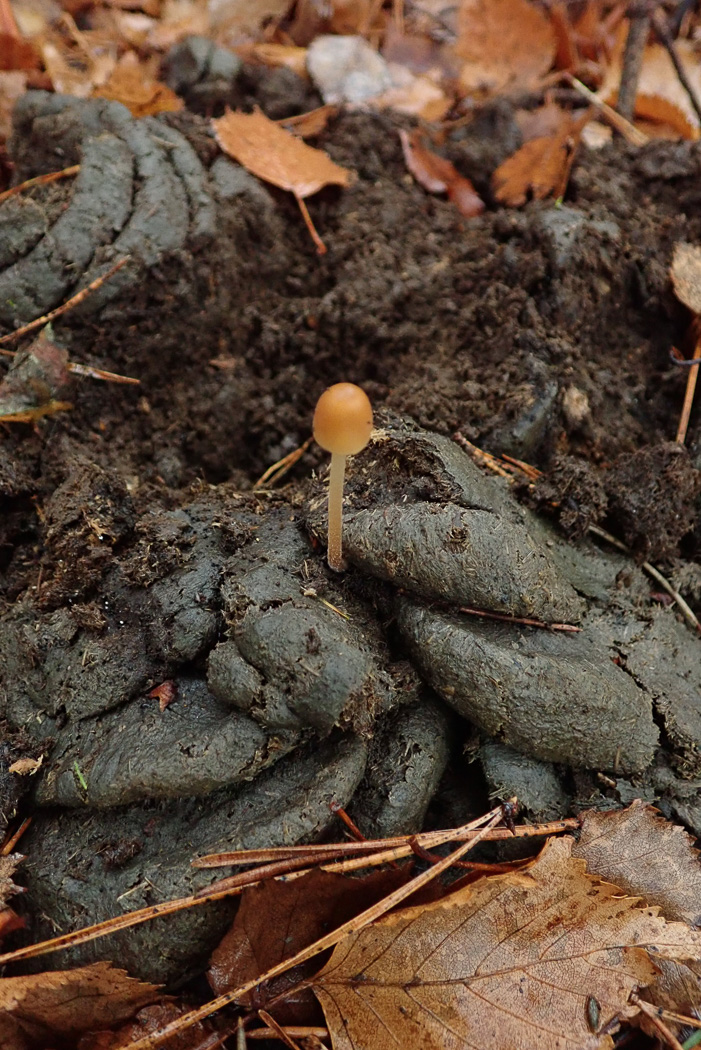
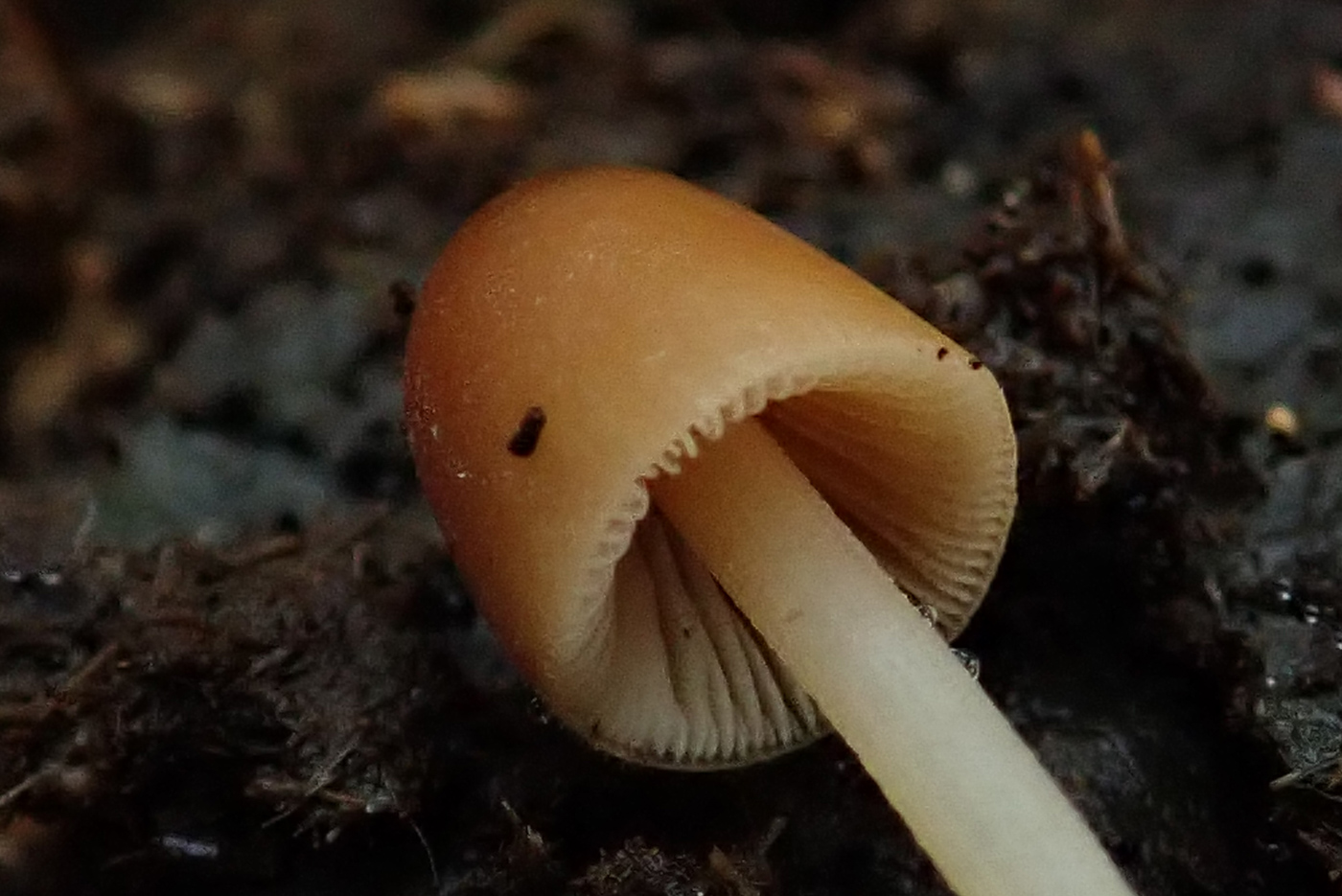 |
November 30th Conocybe pubescens (a Conecap with no common name) 
On a cowpat in the Mire at Burnham Beeches Penny C. noticed this singleton little mushroom with a strongly conical smooth orange / brown cap. This keyed out at home to a common dung species which has a stem covered in tiny fine hairs, hence its Latin species name.
|
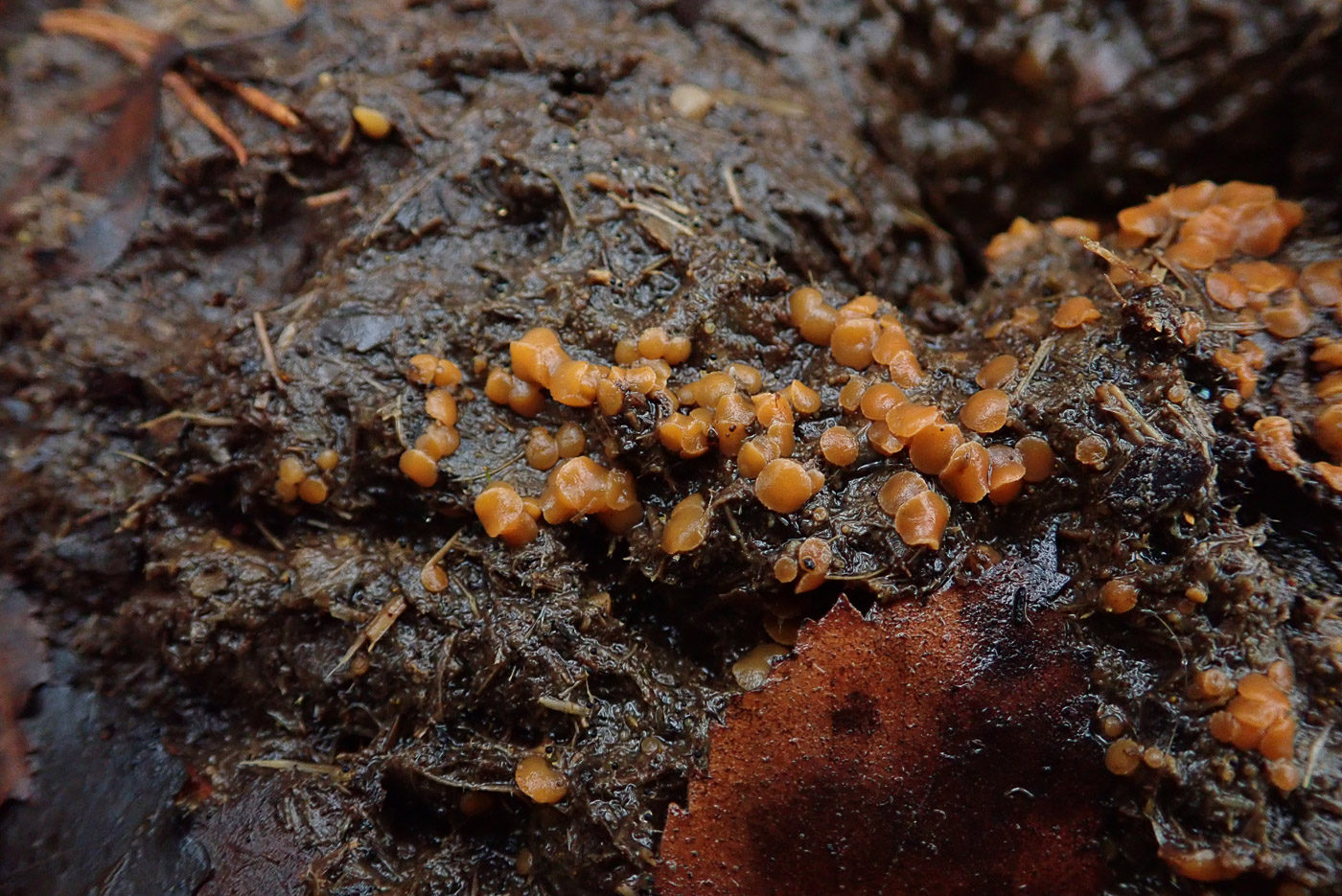
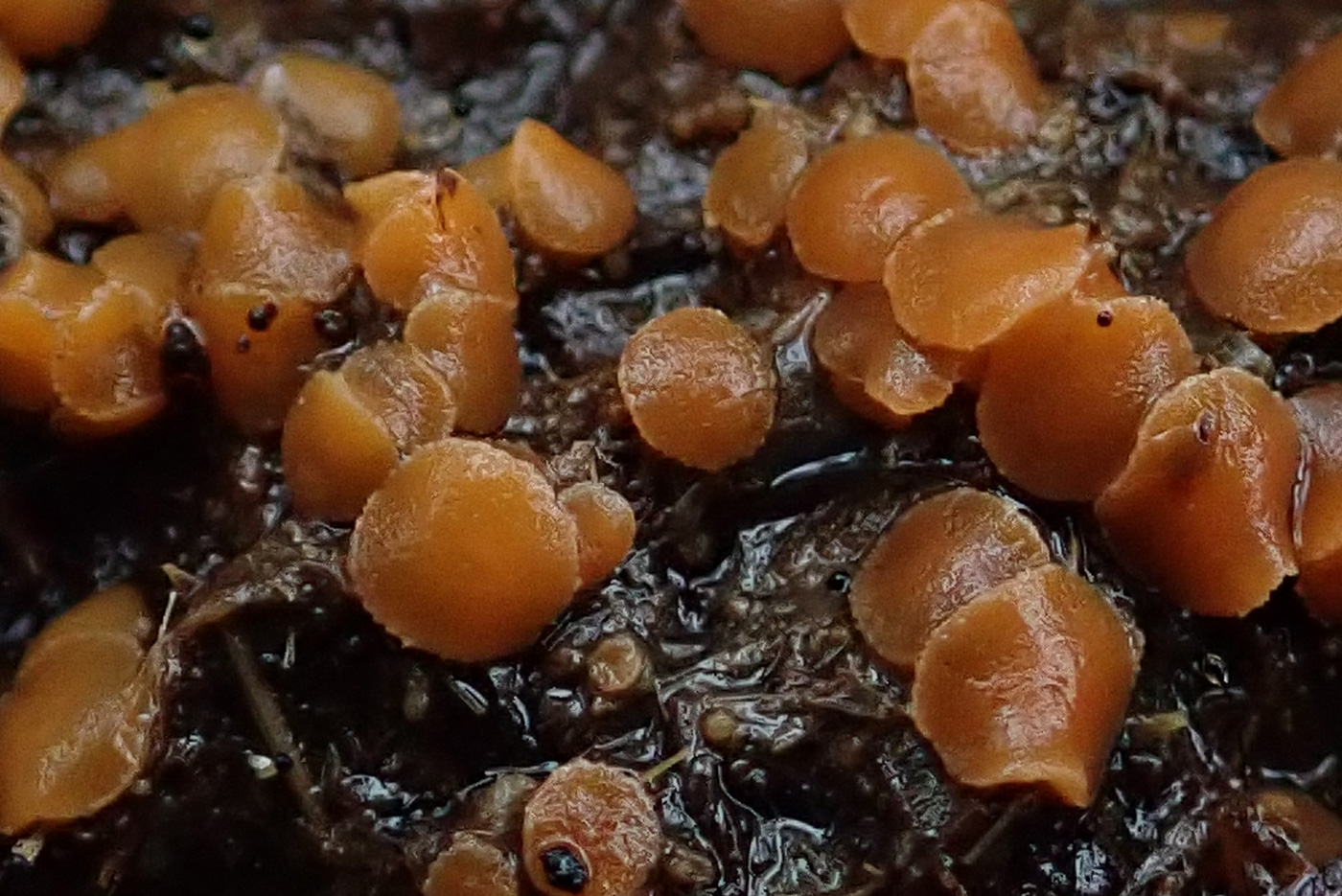 |
November 30th Coprobia (= Cheilymenia) granulata (an Ascomycete with no common name) 
On a cowpat in the Mire at Burnham Beeches Penny C. found this swarm of little orange discs, each less than 5 mm across and lacking a stem or any hairs around the edge. Checking the microscopic characters at home confirmed this as a very common dung species, recently moved into the genus Cheilymenia.
|
November 29th 2020
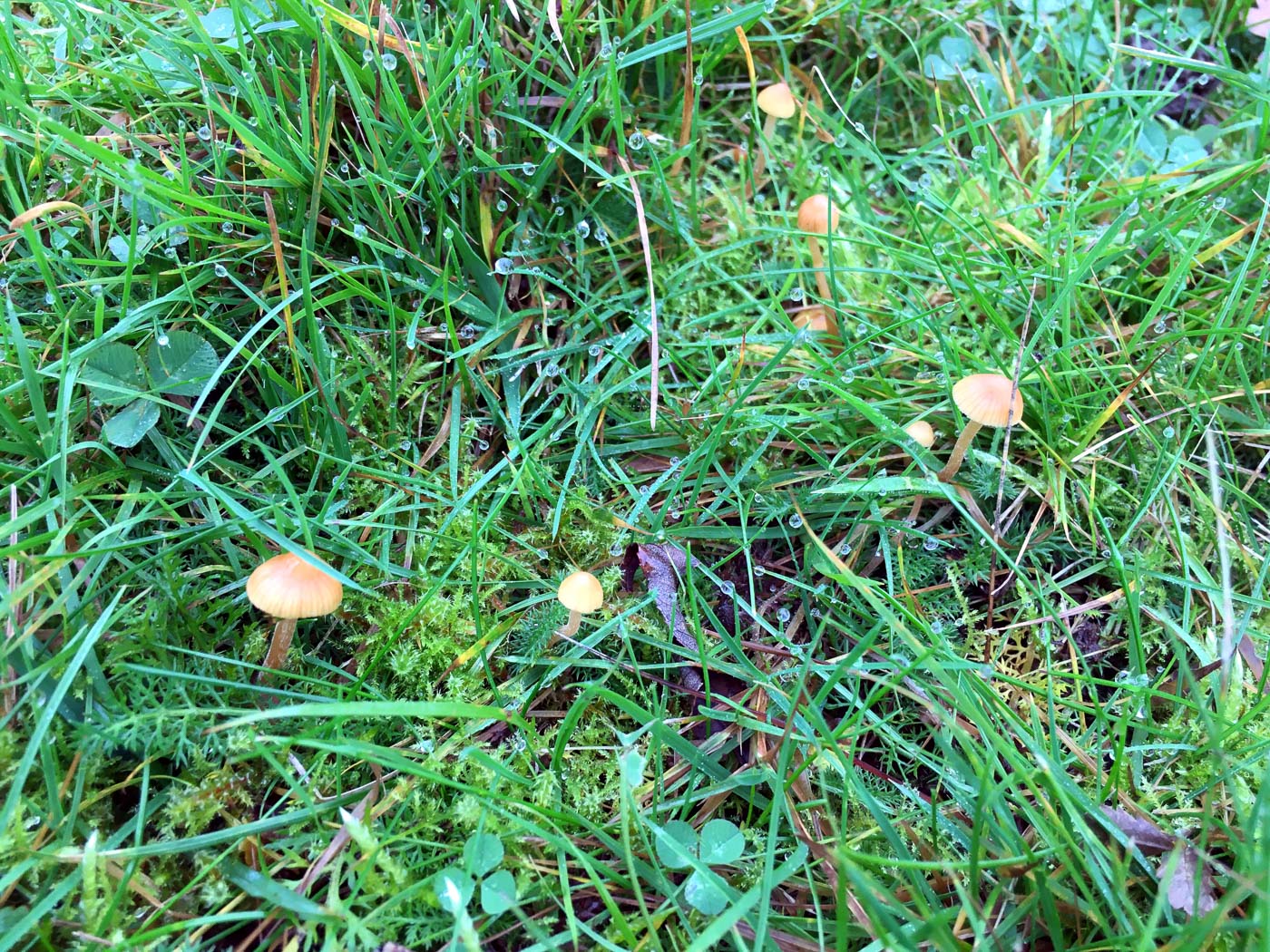
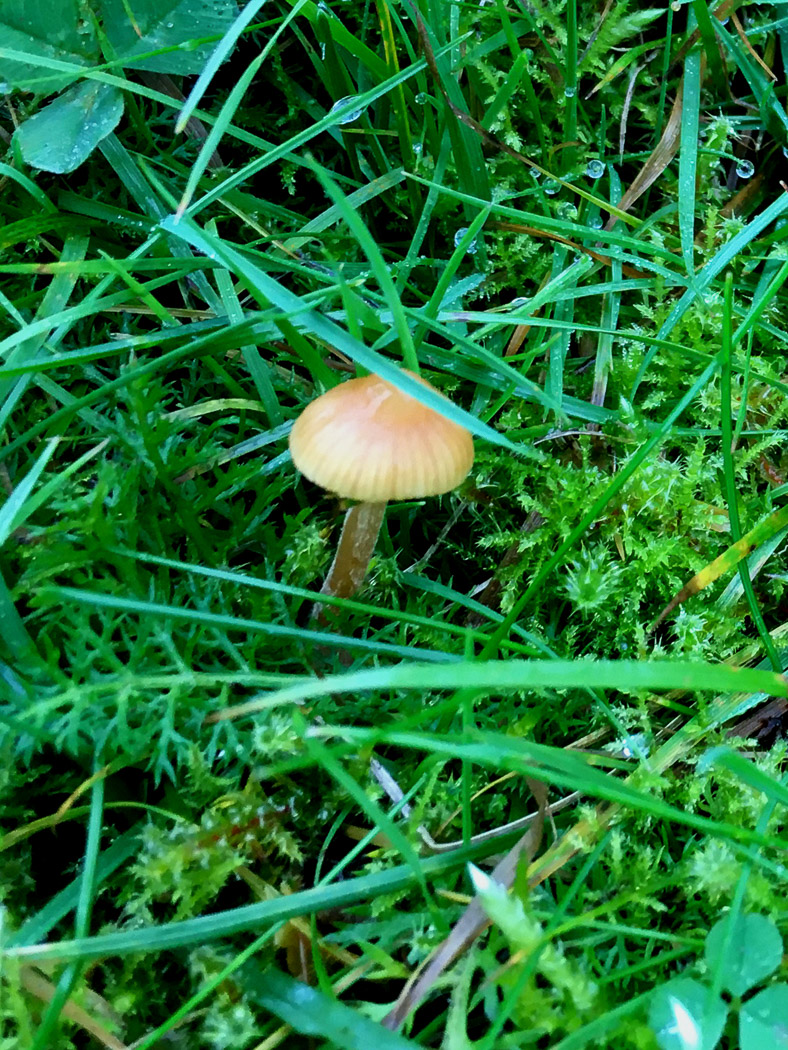 |
November 29th Galerina clavata (Ribbed Bell) 
Russell Ness found this dainty collection of Bells in mossy grass at Burnham Beeches. There are many Bells about in grassland at the moment - typical palish LBJs, but they always need keying out using a scope to name to species. This is one of the commonest species but its worth noting that despite its common name many other Bells display the translucent 'ribbing' effect on the cap (seen in photo 2), so this is not a character one can rely on in the field.
|
November 27th 2020
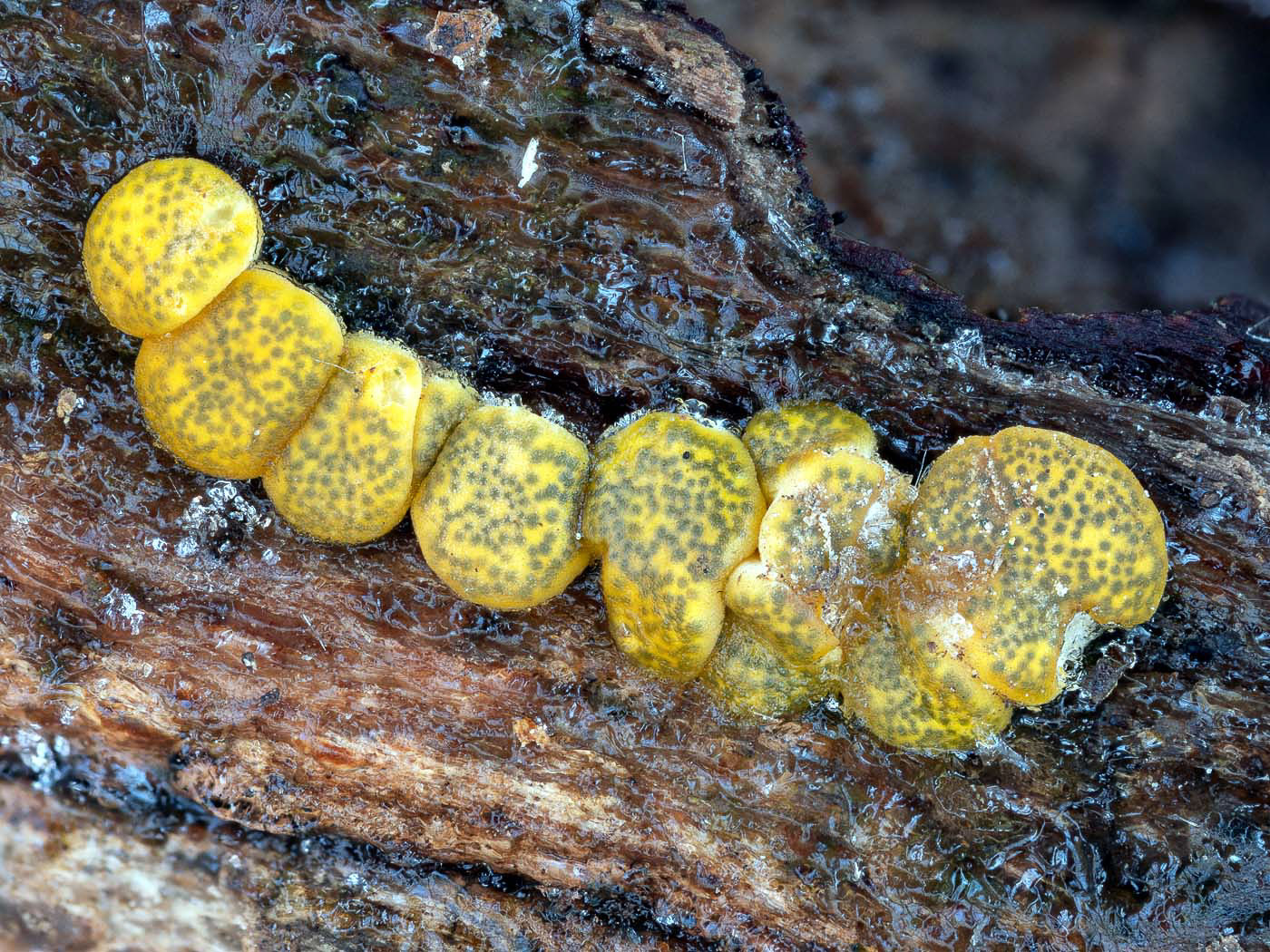 |
November 27th Hypocrea gelatinosa (an Ascomycete with no common name)
The sharp eyes of Barry Webb noticed these tiny 'cushions' on the bark of fallen deciduous wood in Burnham Beeches. Each cushion is less that 3mm across and the tips of the cells containing the green spores are visible as tiny dark blotches just under the surface, making this rare species very distinctive and recognisable in the field. We have just two previous county records, though along with many other tiny species of fungi they are so easily missed and may well not be that rare.
|
November 26th 2020
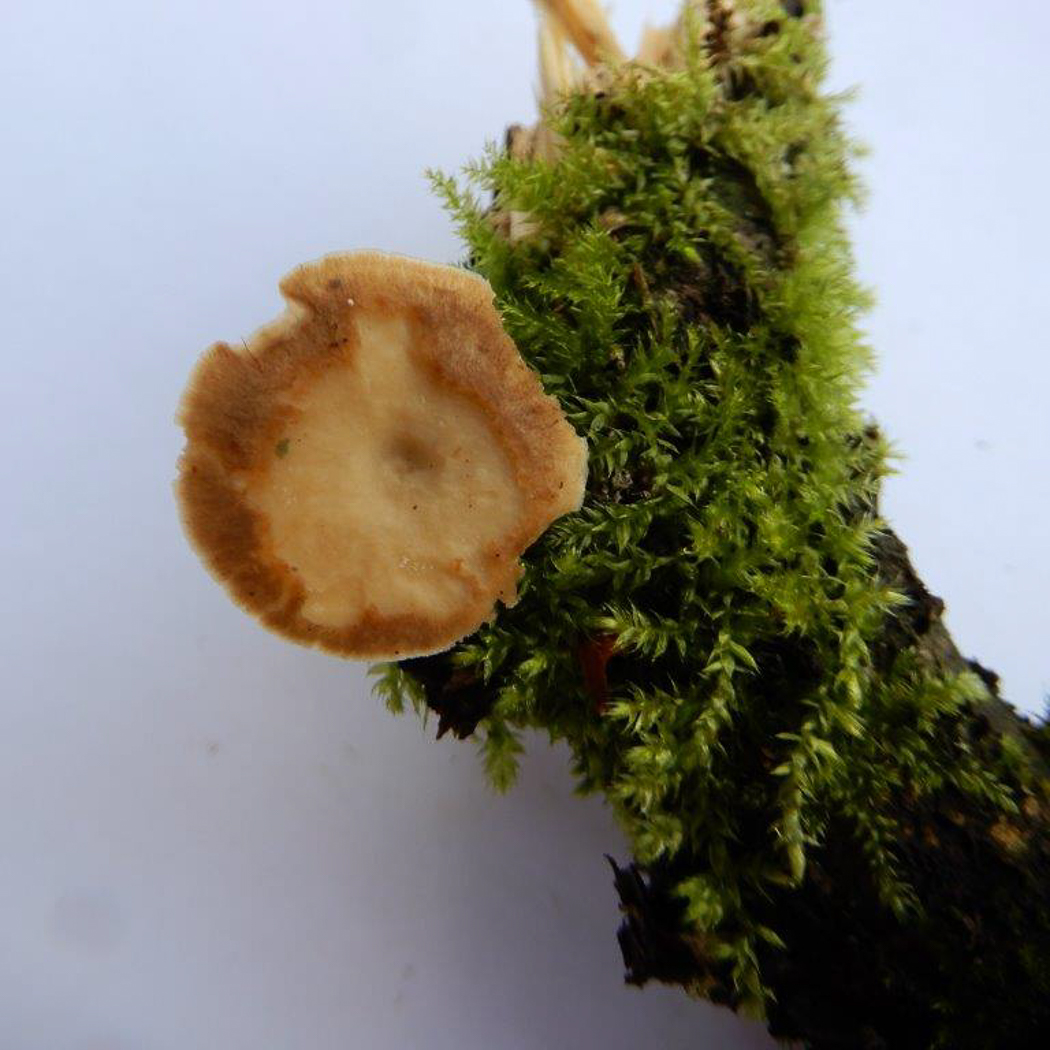
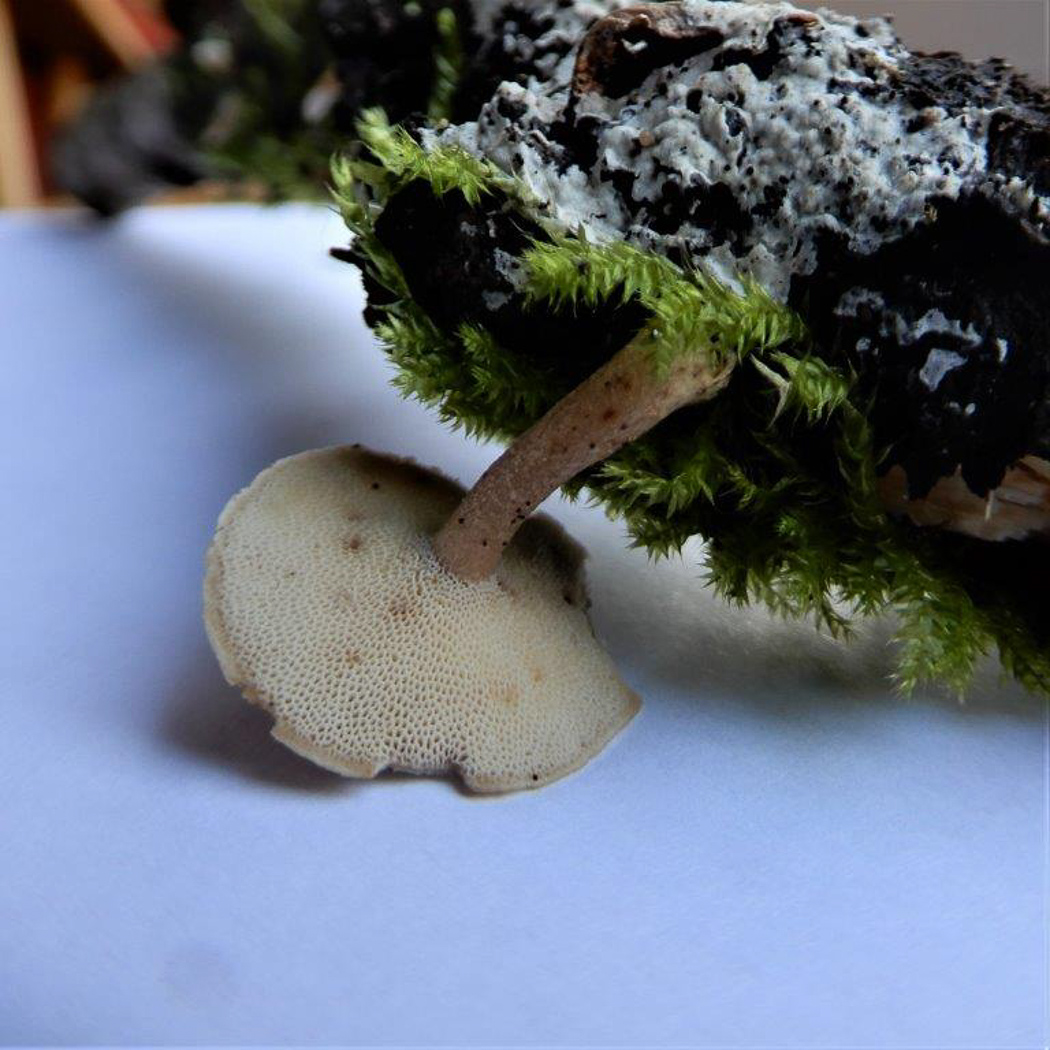
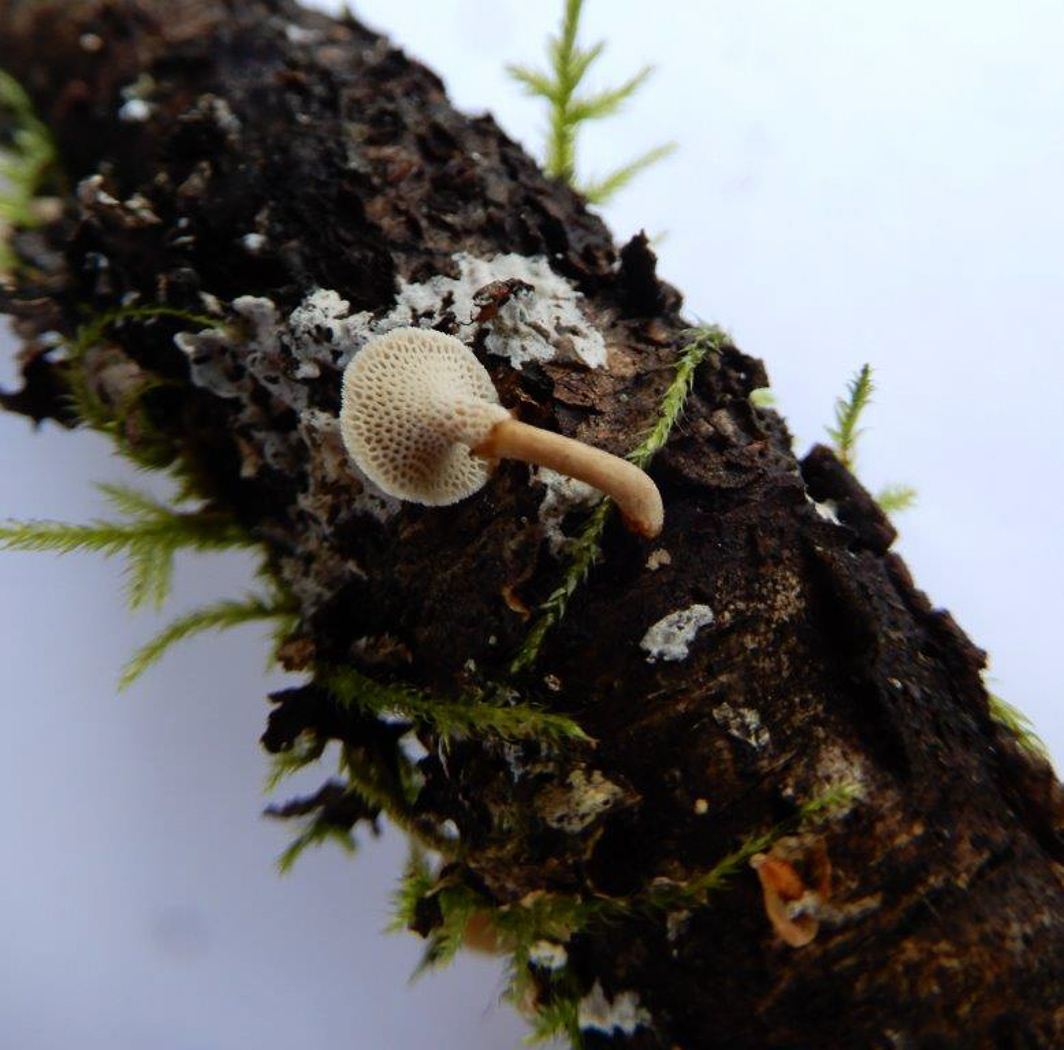 |
November 26th Polyporus brumalis (Winter Polypore)
In Moorend Common on a fallen deciduous branch Margaret Bolton found several small thin fleshed caps on stems which on closer inspection had distinct pores underneath, thus making them Polypores. The largest (shown in the photos) was 2 cm across and the smaller ones had decurrent pores. This occasional species has considerably larger (more widely spaced) pores than other similar sized Polypores and tends to fruit late in the season (sometimes in spring); the pores which tend to run a little way down the stem(see photo 3) is also a good character to look for.
|
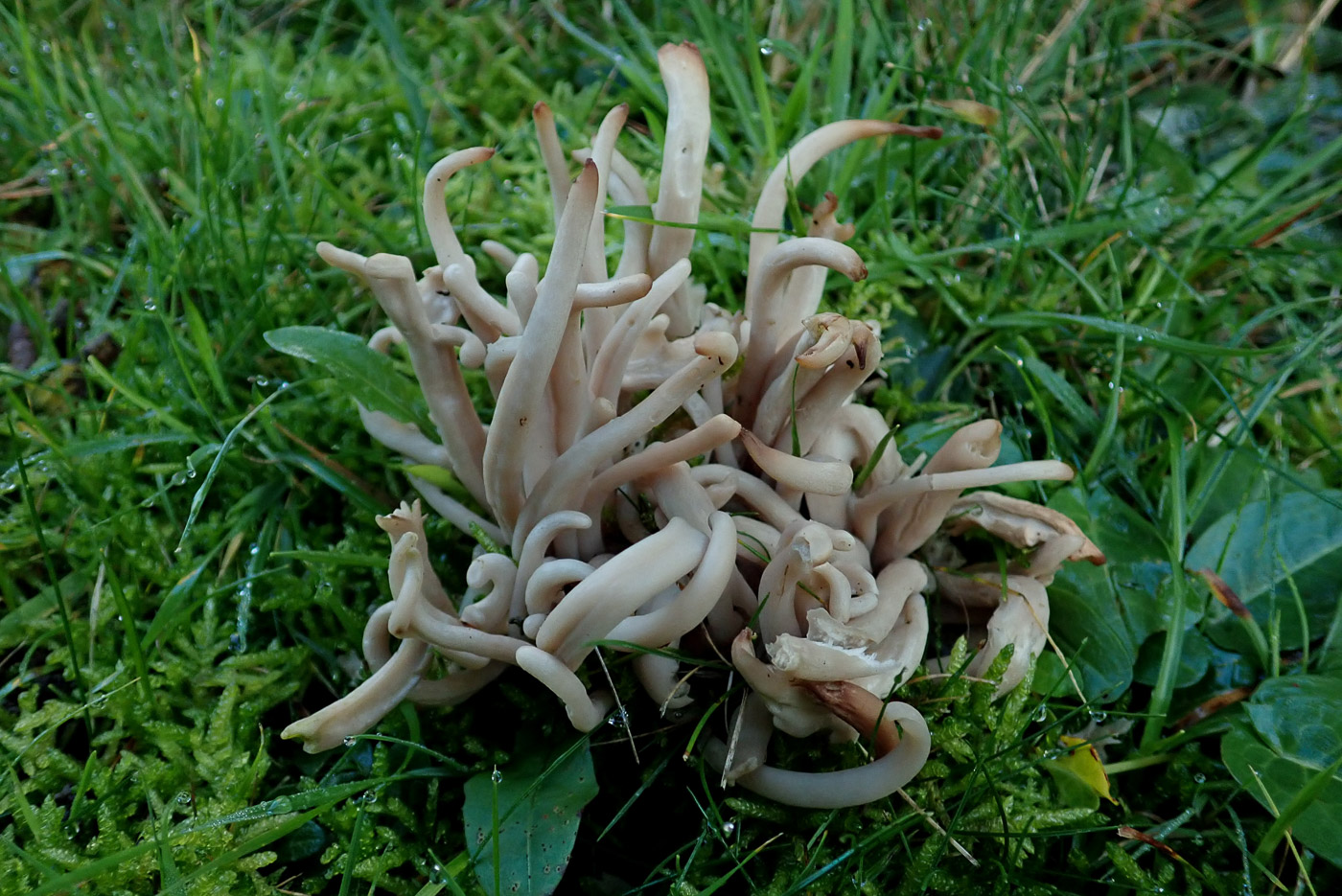 |
November 26th Clavaria fumosa (Smokey Spindles)
Penny C. was delighted to find this old friend growing in Prestwood churchyard. We have previous photos (dated Oct 07 and Nov 12) from different sites, but here in Prestwood in 2005 the species was new to her (and she still has the photo), so it's good to know that it's still happily fruiting here amongst the many different waxcaps and clubs. This is clearly one of the best sites in the area for grassland species.
|
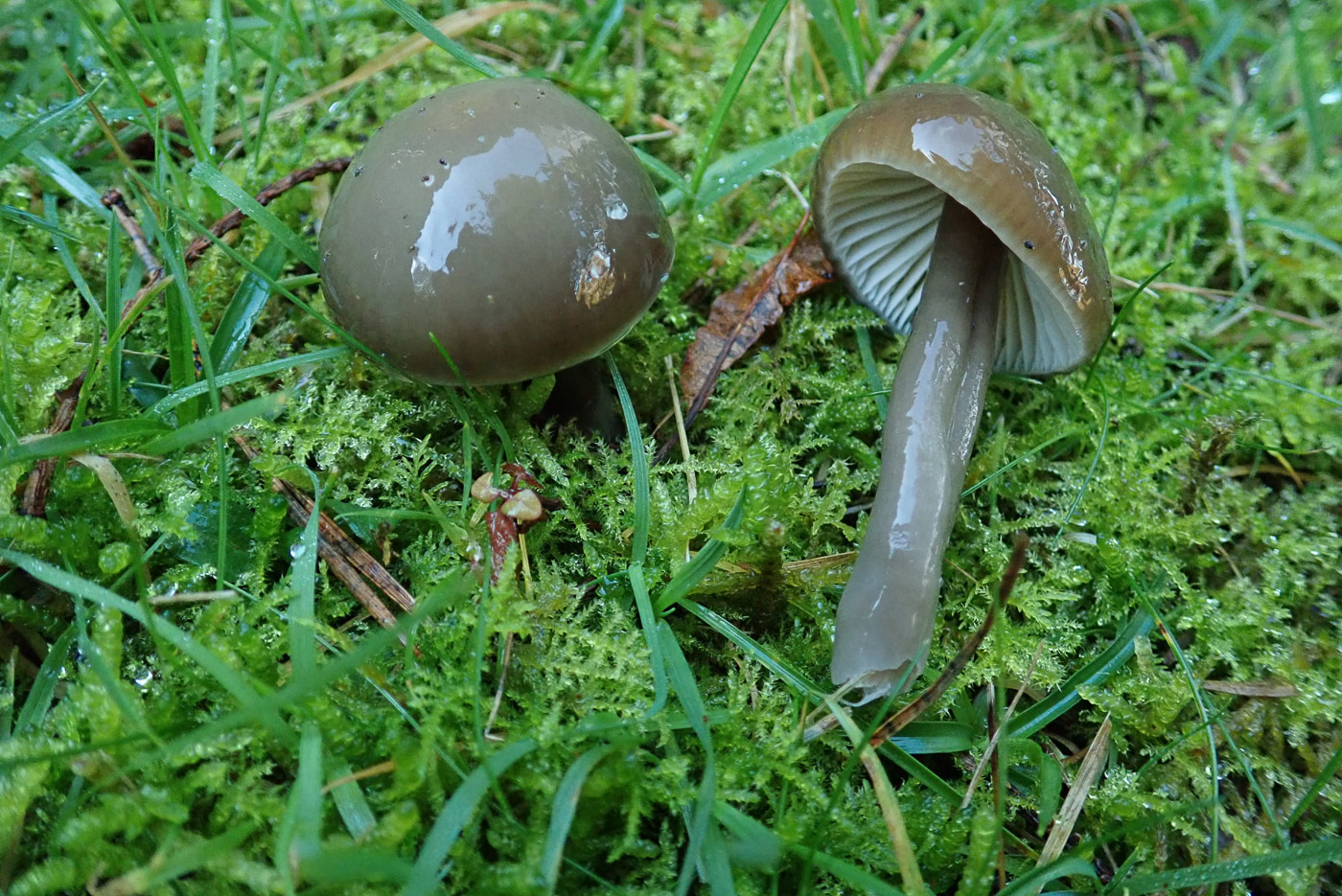 |
November 26th Hygrocybe irrigata (= Gliophorus irrigatus (Slimy Waxcap)
Penny C. found this apparently late fruiting waxcap for the first time last week (dated Nov 20) but again today in Prestwood churchyard in pristine condition, thus its inclusion here. The caps were darker grey than in the previous collection making the pale gills appear much more contrasting, but the important feature to notice in the field are that both cap and stem are extremely slimy! This separated the species from the few other grey capped Waxcaps.
|
November 24th 2020
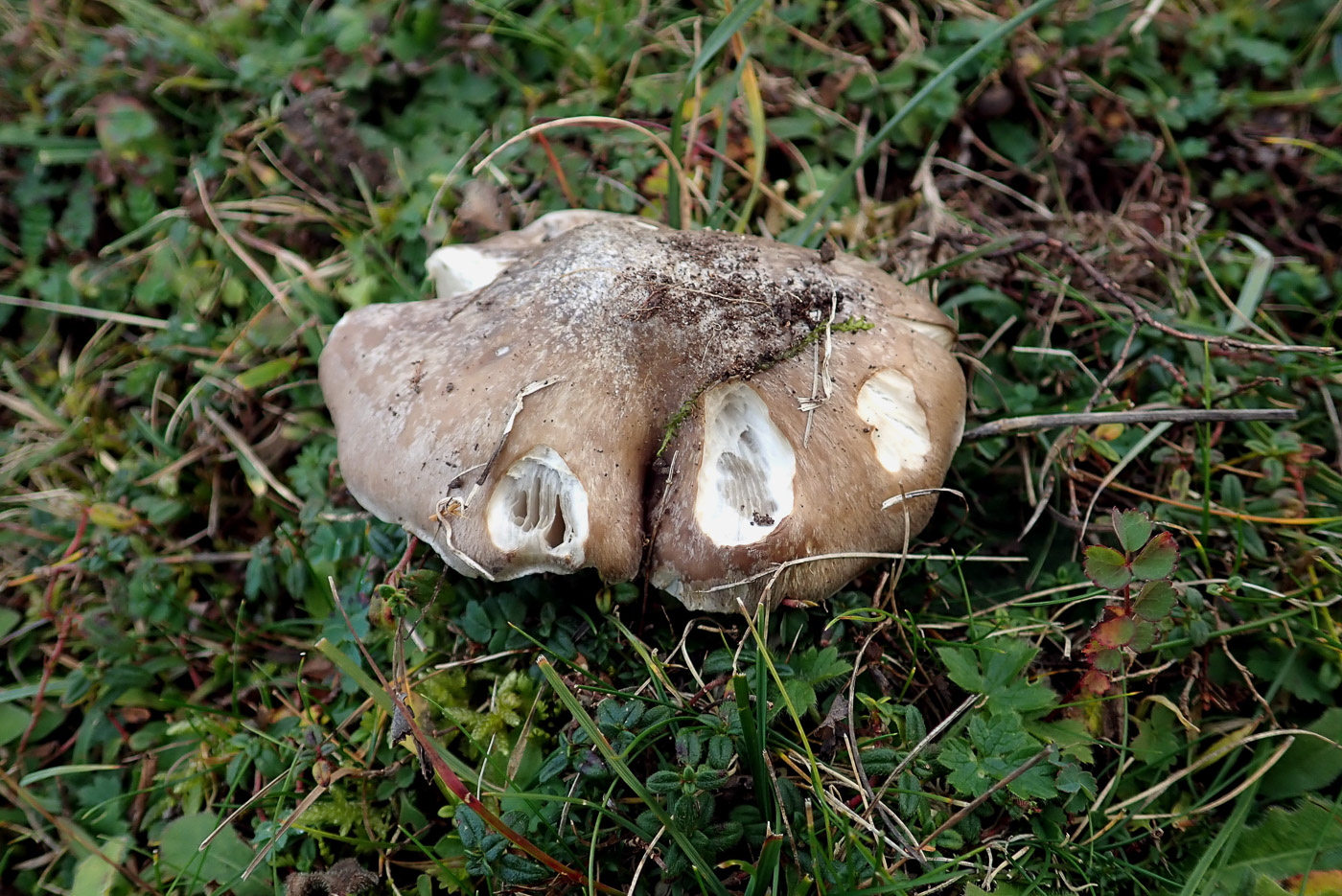
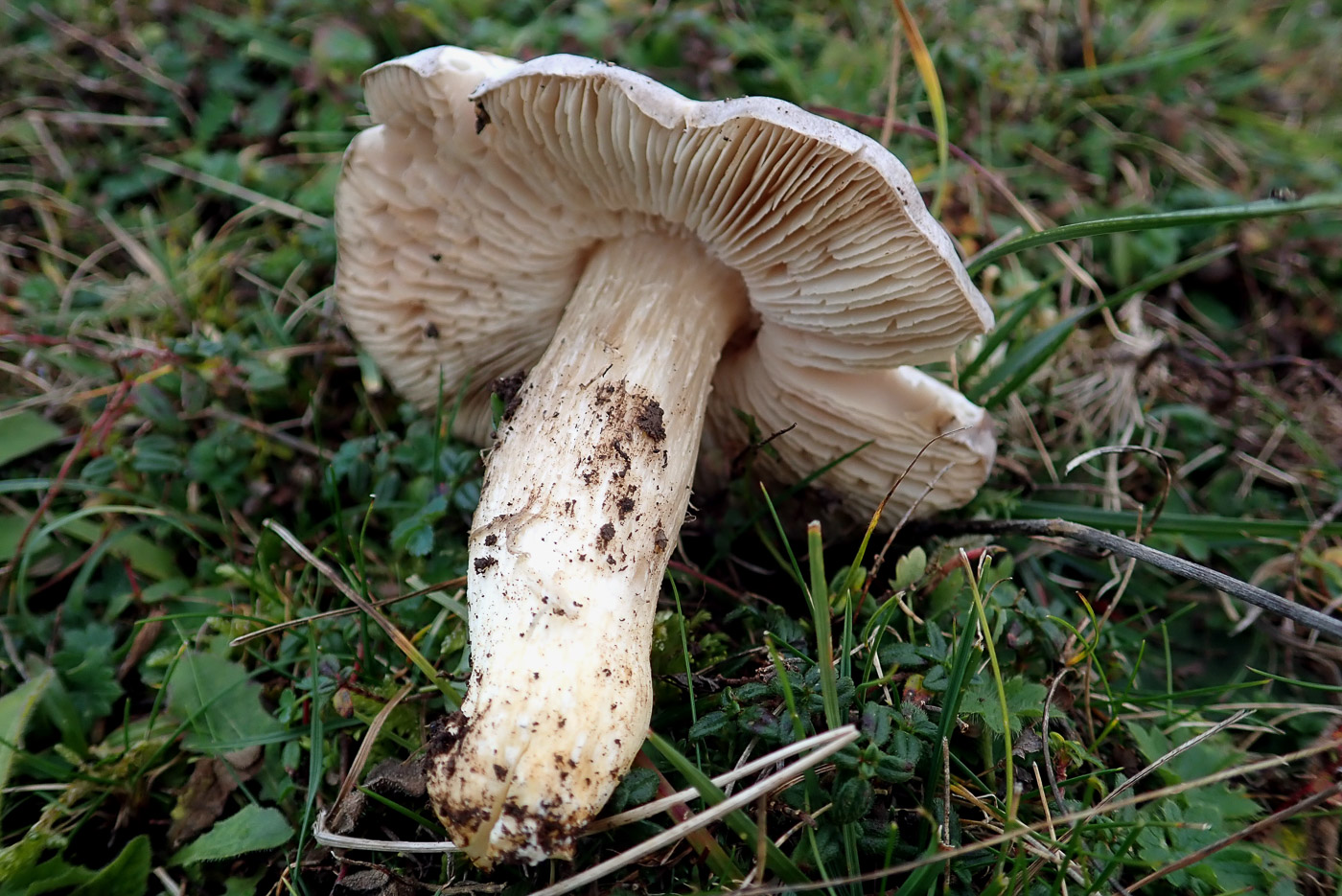 |
November 24th Entoloma bloxamii sl. (Big Blue Pinkgill) 
On the escarpment at Coombe Hill Penny C. came across this large chunky singleton Entoloma which strongly reminded her of a familiar species from nearby Watlington Hill (Oxon) which had been the focus of a study undertaken by Martyn Ainsworth et al in 2018, reported in the magazine Field Mycology. E. bloxamii was therein split into several different species using DNA, but separating them is by no means easy even using a scope. The amount and shade of blue is important, also spore size, and though this Coombe Hill specimen lacked much sign of blue Penny was positive this was due to age and weathering and that the specimen would prove to be one of those described. This has now proved to be the case as a result of sending the specimen for sequencing (Jan 2021) and this species, E. bloxamii ss, is not only new for the site but for the county as well. The Watlington Hill Big Blue Pinkgill is the closely related E. atromadidum, a deep almost navy blue species, not yet recorded in Bucks but likely to be here on the Chiltern escarpment - one to look out for in future.
|
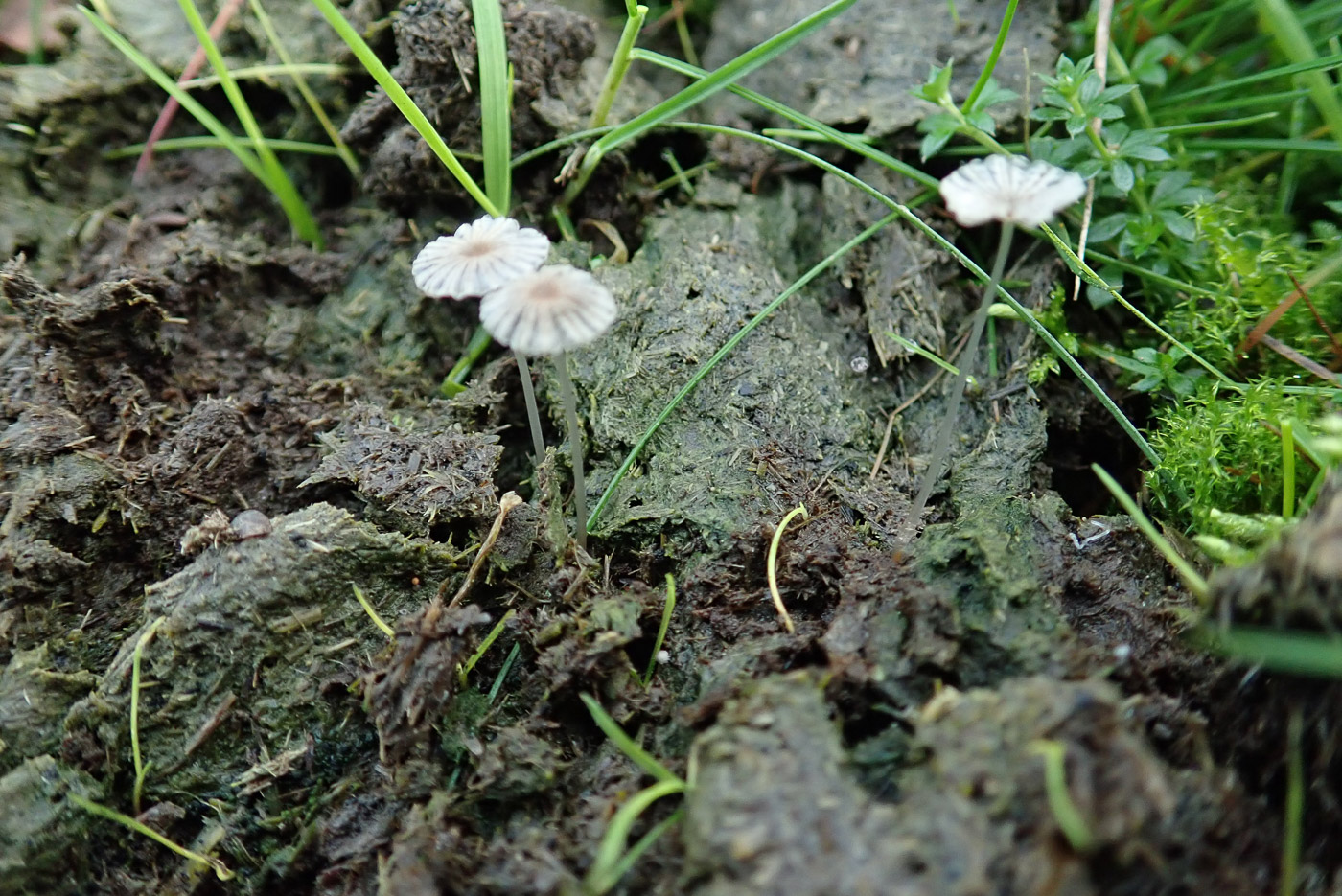
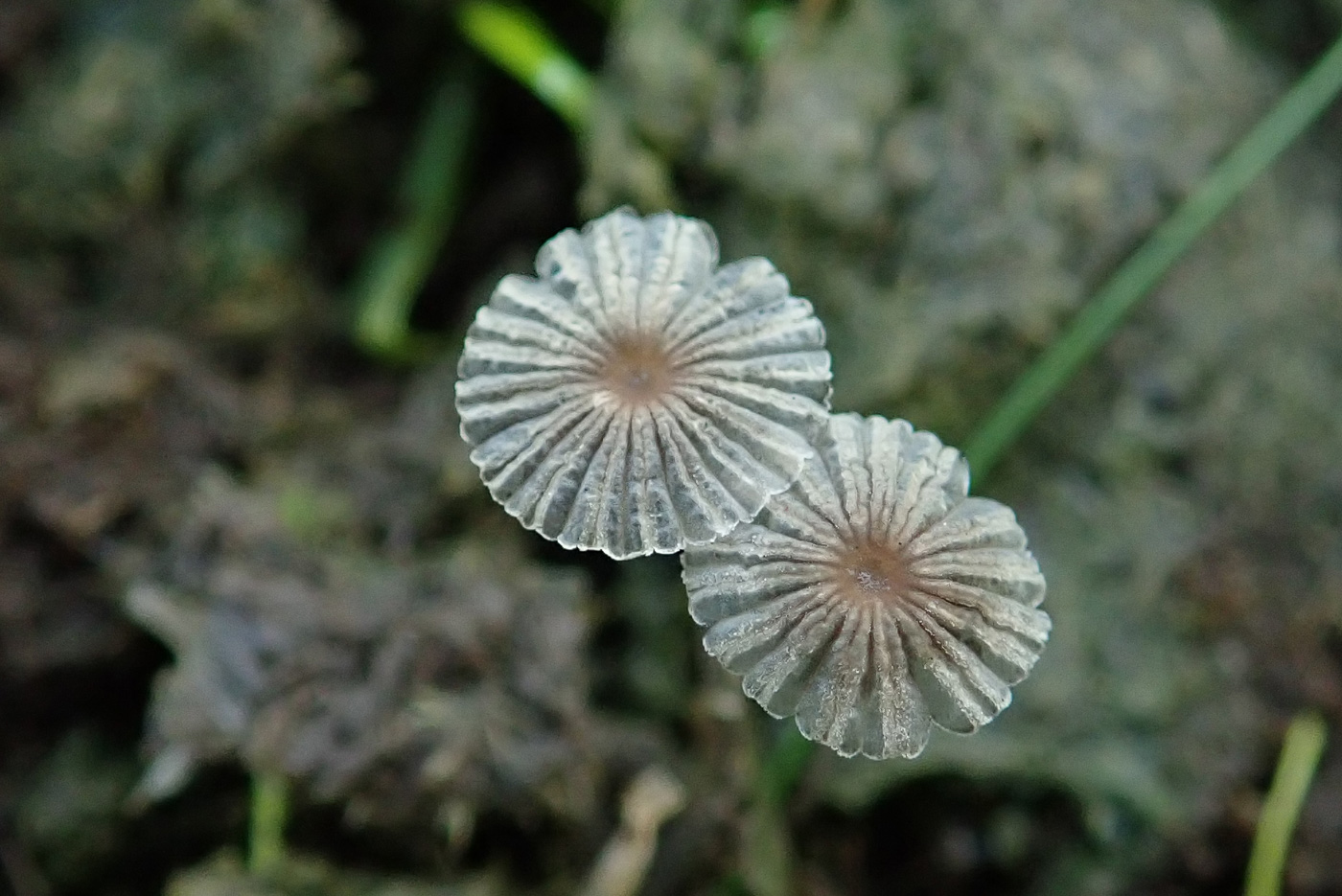
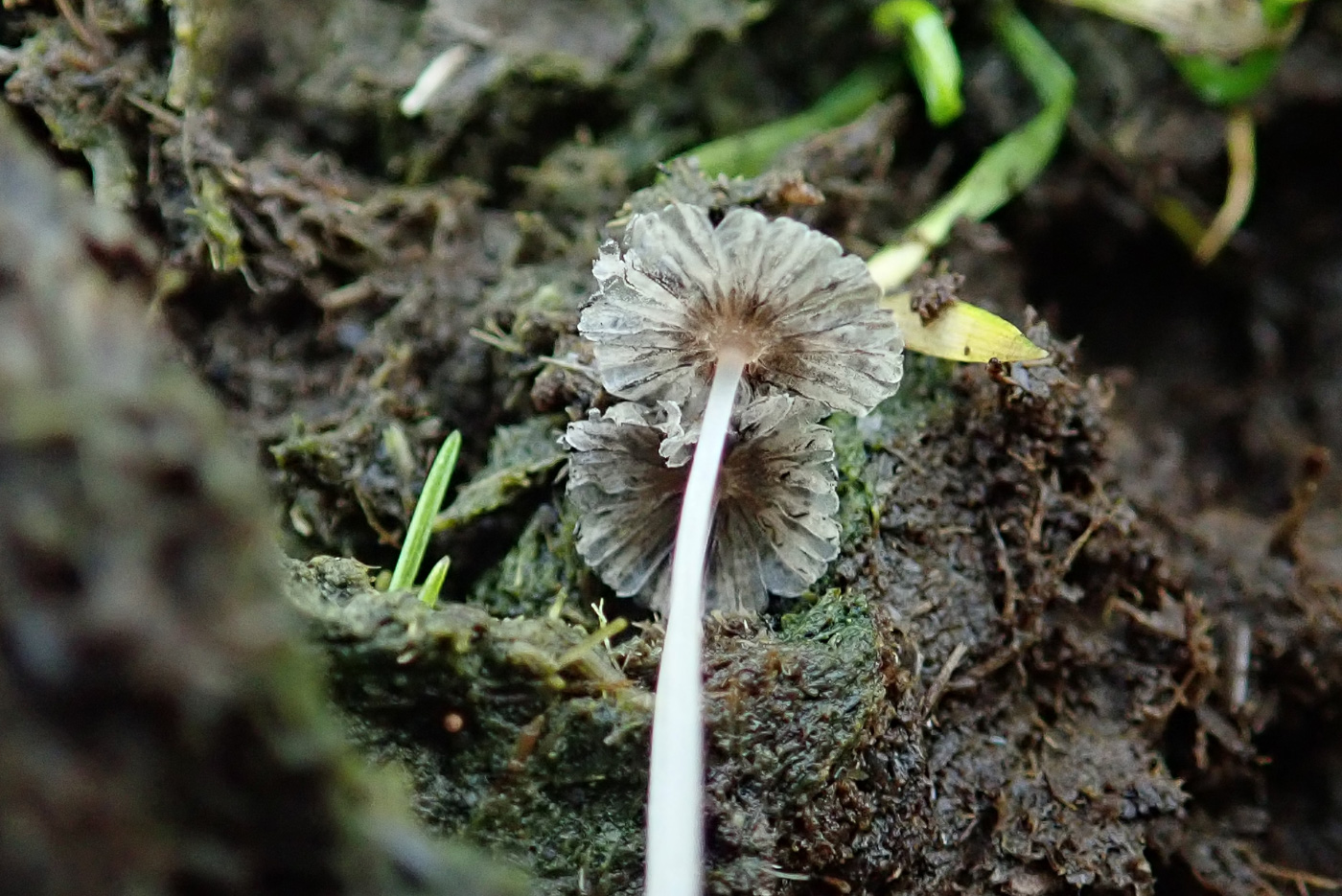 |
November 24th Parasola misera (an Inkcap with no common name) 
At Coombe Hill in a grassy area having been grazed by cattle Penny C. found these three tiny Inkcaps growing on cow dung. Caps were under 5 mm across but very pretty close-up with brown central discs. There are many small Inkcaps which inhabit dung of various sorts but this one was familiar and Penny suspected the spore shape would be distinctive and decisive, as luckily was the case which saved considerable time at home with the lengthy key. We have four previous county records and this is not a rare species, just easily overlooked.
|
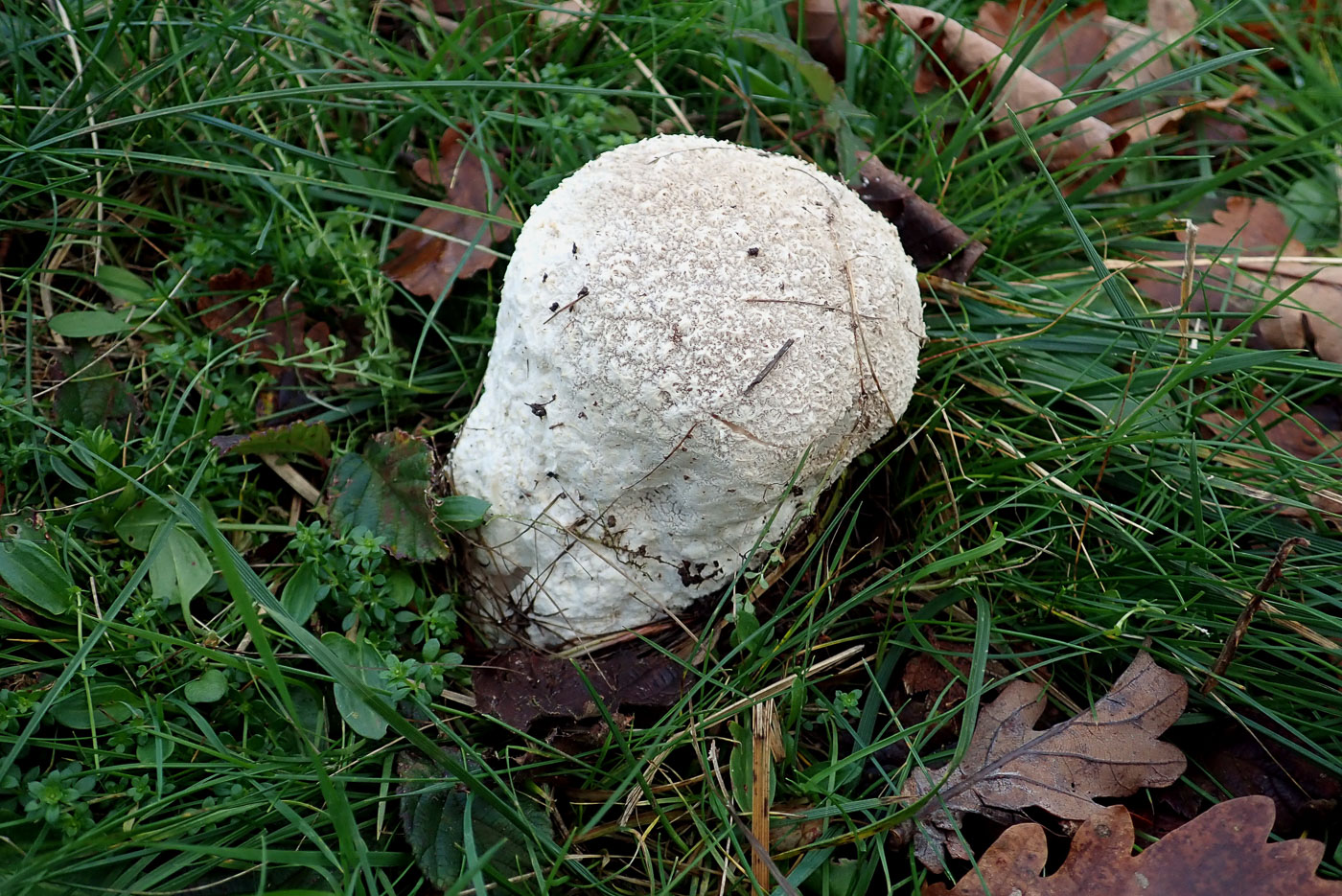
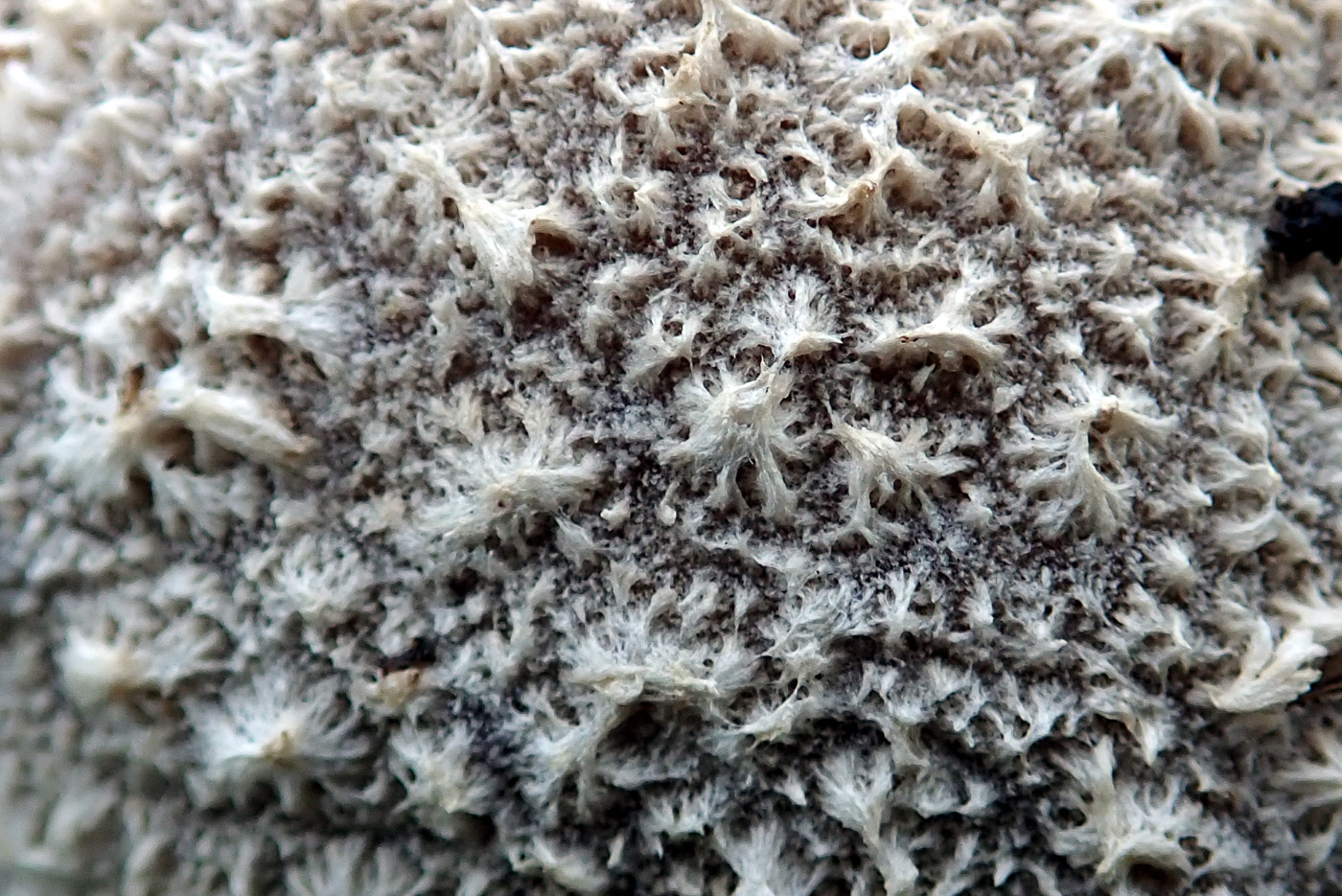 |
November 24th Lycoperdon (=Bovistella) utriformis (Mosaic Puffball)
At Coombe Hill in a grassy area Penny C. was surprised to find a reasonably fresh specimen of this occasional grassland species. Not unlike an overgrown L. perlatum, it was a good 12 cms tall by nearly as many across but still white inside hence not yet with mature spores which could be checked, unfortunately. Photo 2 shows the detail of the surface described as having scurfy warts in hexagonal patches! The species has previously resided in both Handkea and Calvatia - like the Giant Puffball, but has recently be re-assigned to Bovistella together with the similar Pestle Puffball.
|
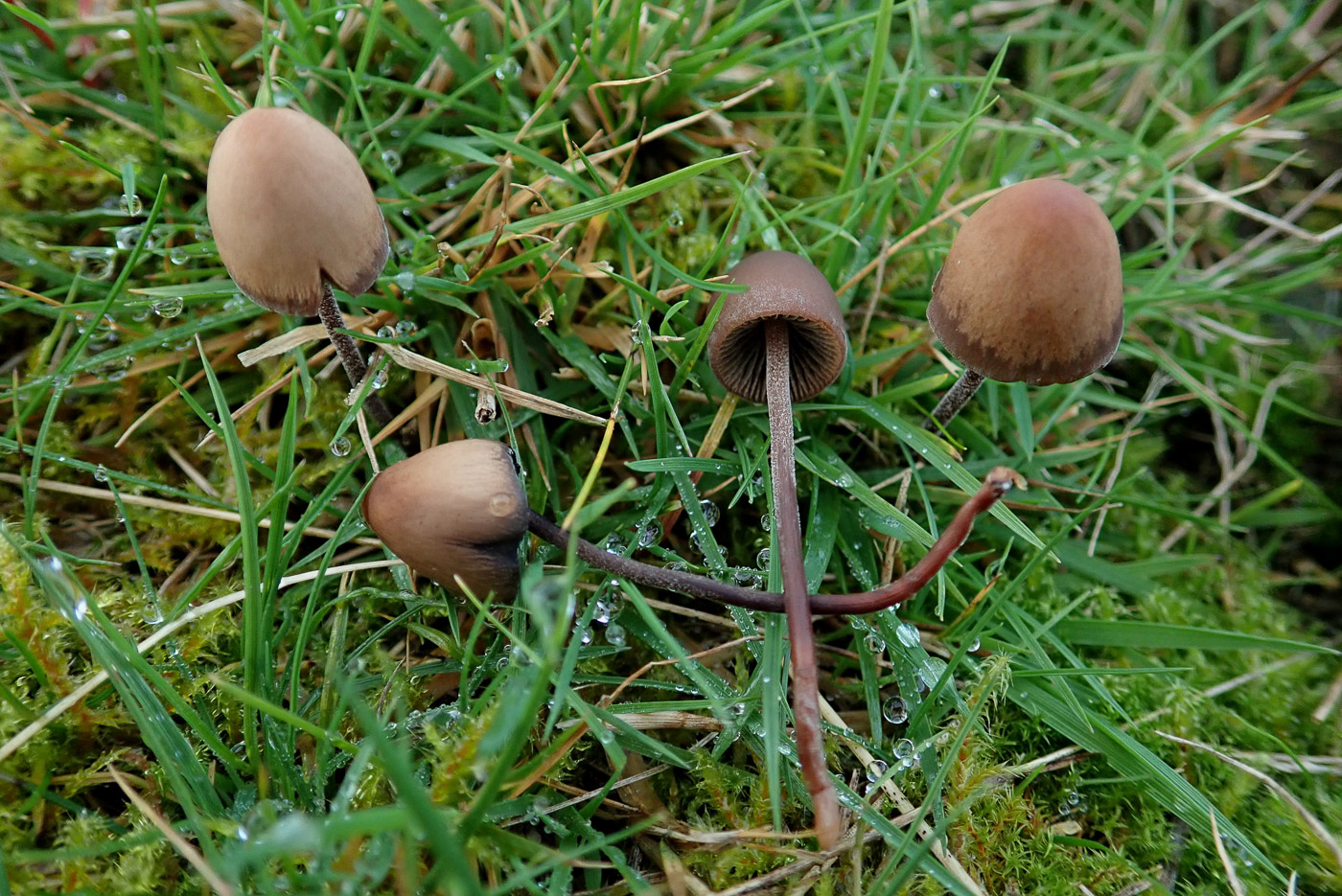
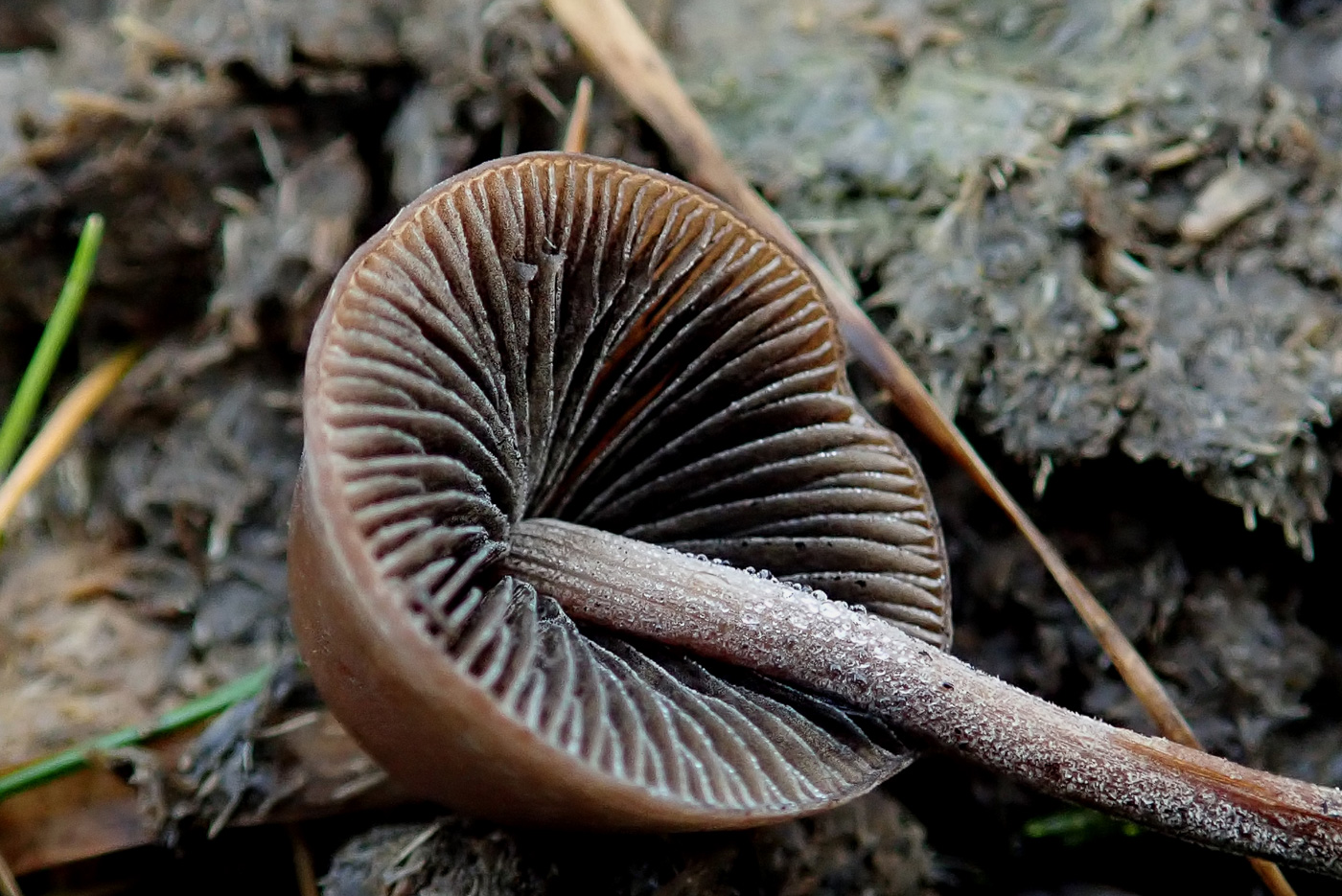 |
November 24th Panaeolus acuminatus (Dewdrop Mottlegill) 
At Coombe Hill in a grassy area having been grazed by cattle Penny C. found several collections of this species on cow dung. The caps were bell-shaped, about 1 cm tall and across and strongly hygrophanous (fading), the gills were black but mottled giving a clue as to genus, and the stems were dark reddish brown and clearly pruinose all over (as if powdered) with droplets towards the top (visible in photo 2). These characters together with microscopic features confirmed the determination of a common species which occurs either directly on dung or on dung affected soil.
|
November 23rd 2020
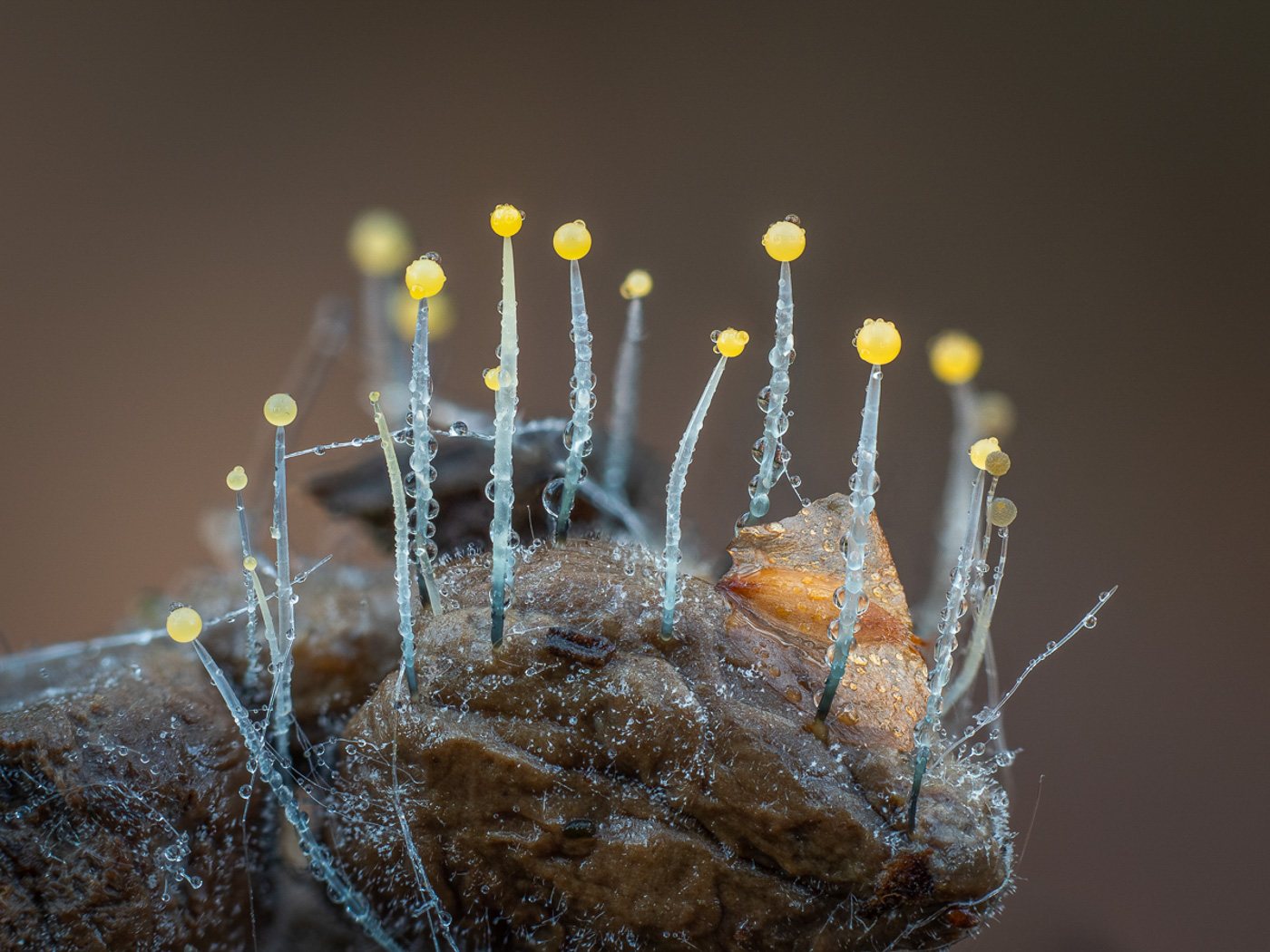 |
November 23rd Phycomyces blakesleeanus (a fungus with no common name)
Barry Webb found, photographed and identified this amazing tiny but beautiful fungus which was on a bird dropping in Burnham Beeches. There are scattered records for this from the UK but apparently none for Bucks so it is new to the site and to the county.
|
November 22nd 2020
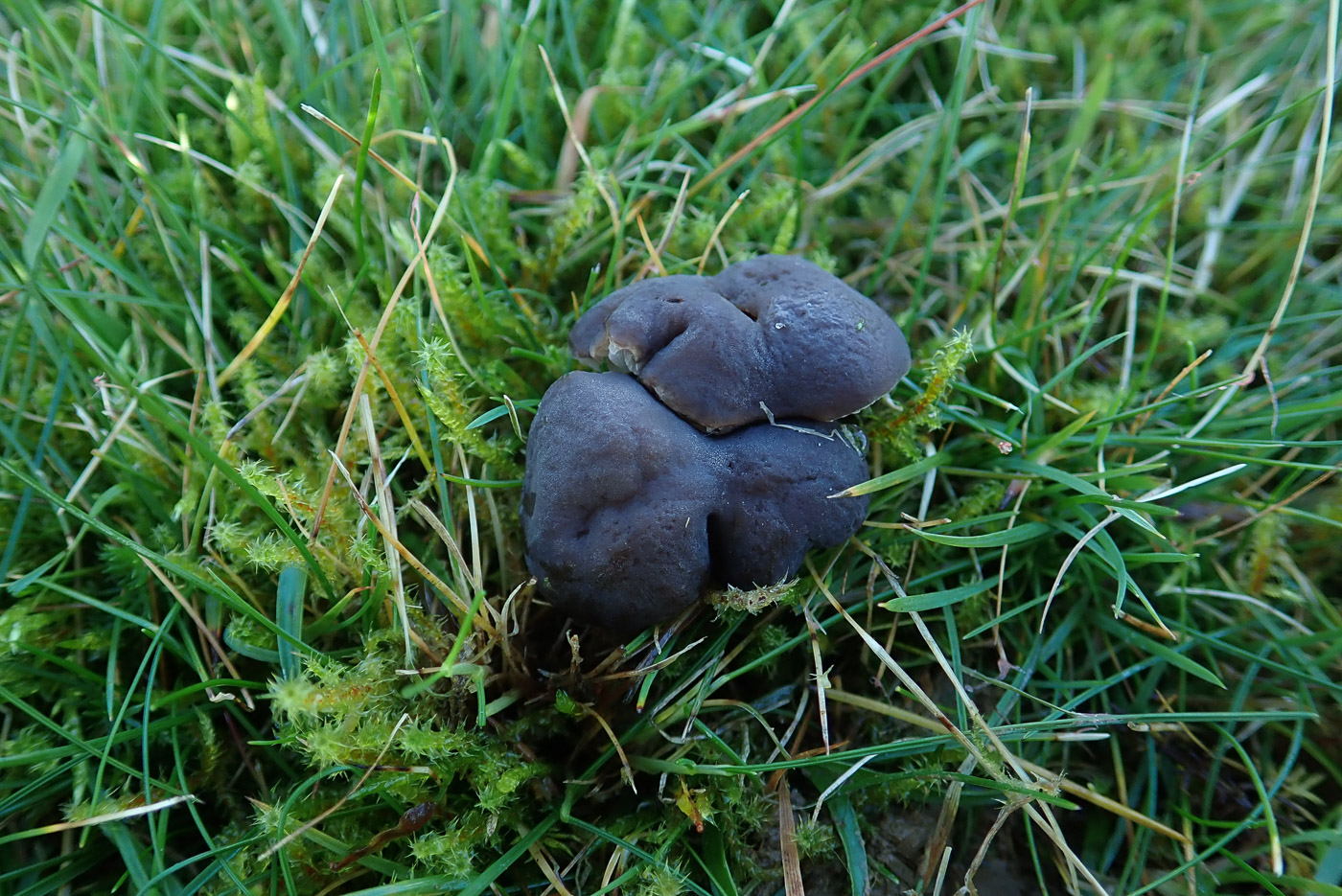
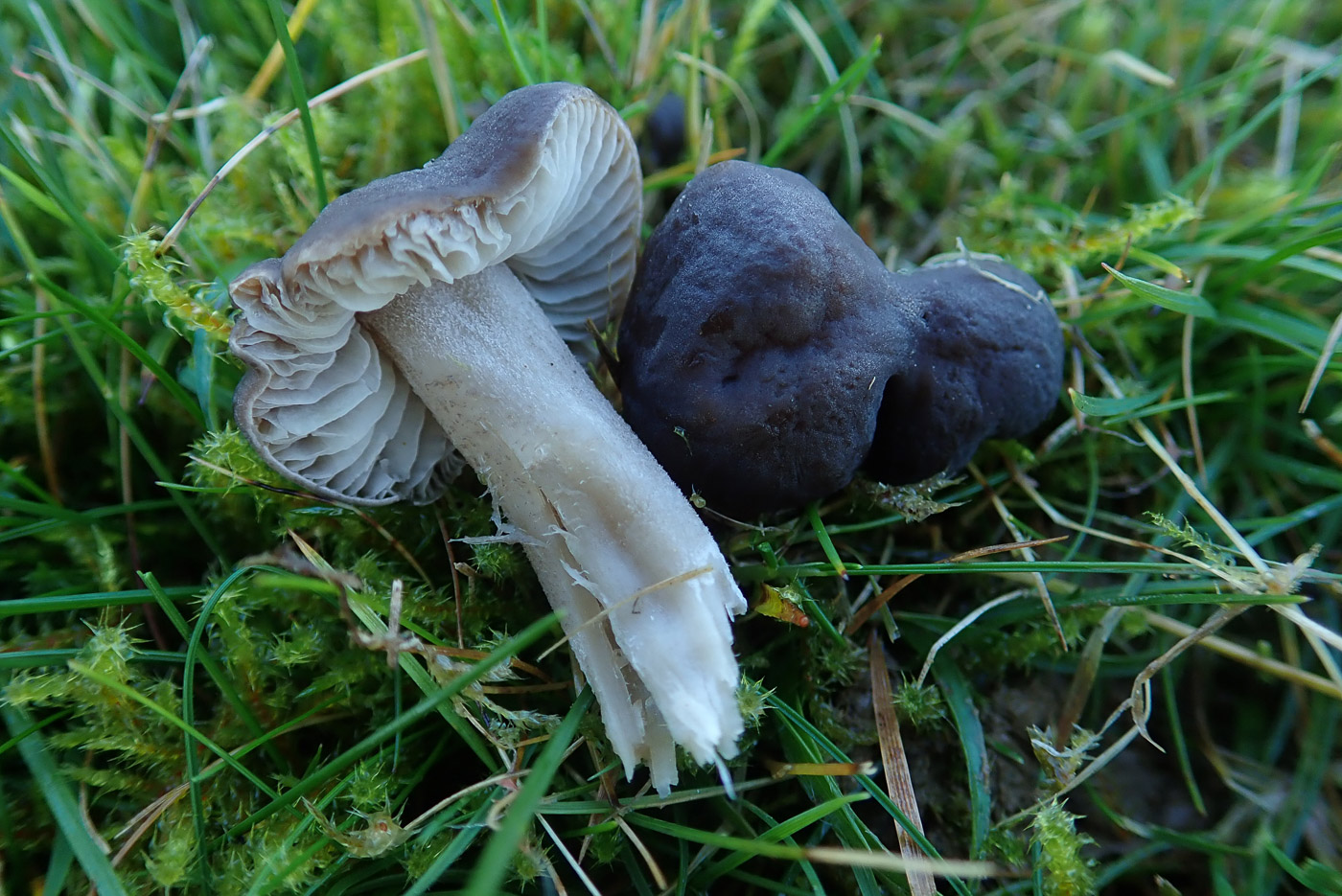 |
November 22nd Dermoloma cuneifolium (Crazed Cap) 
We have a photo of this already but from a while ago, dated Oct 07, but this twosome, found on Gt. Hampden Cricket Pitch by Penny C., looked rather different with almost black caps and not much of the characteristic obvious mealy smell in evidence. This is a common little grassland species with a dark greyish dry cap and pale gills and usually a quick check for the mealy smell is all that is needed to confirm its identity in the field. As the season progresses and frosts come into play, many species with typical smells can start to confuse, also funny things happen to waxcap colours, making life all the harder for the conscientious mycologist!
|
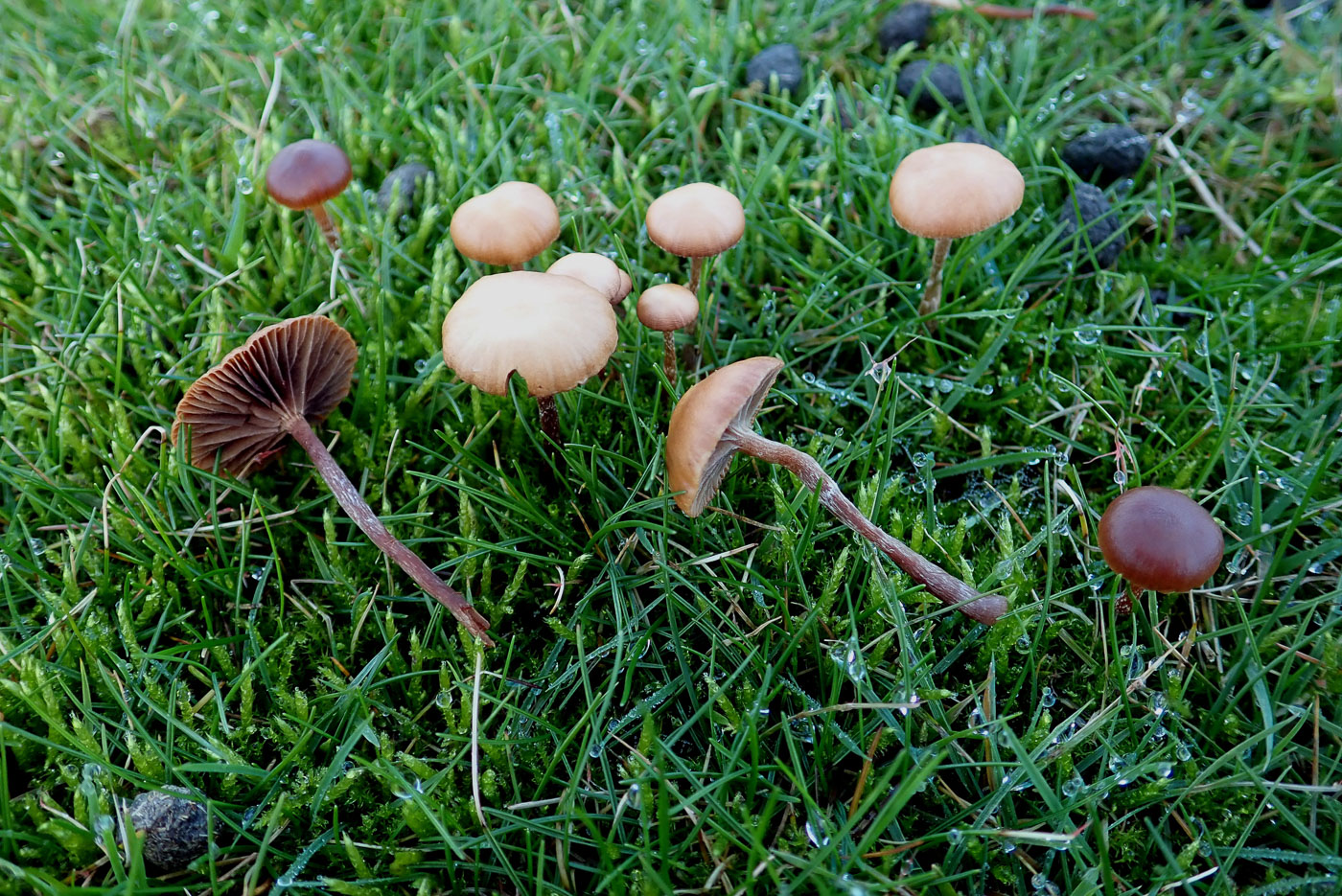
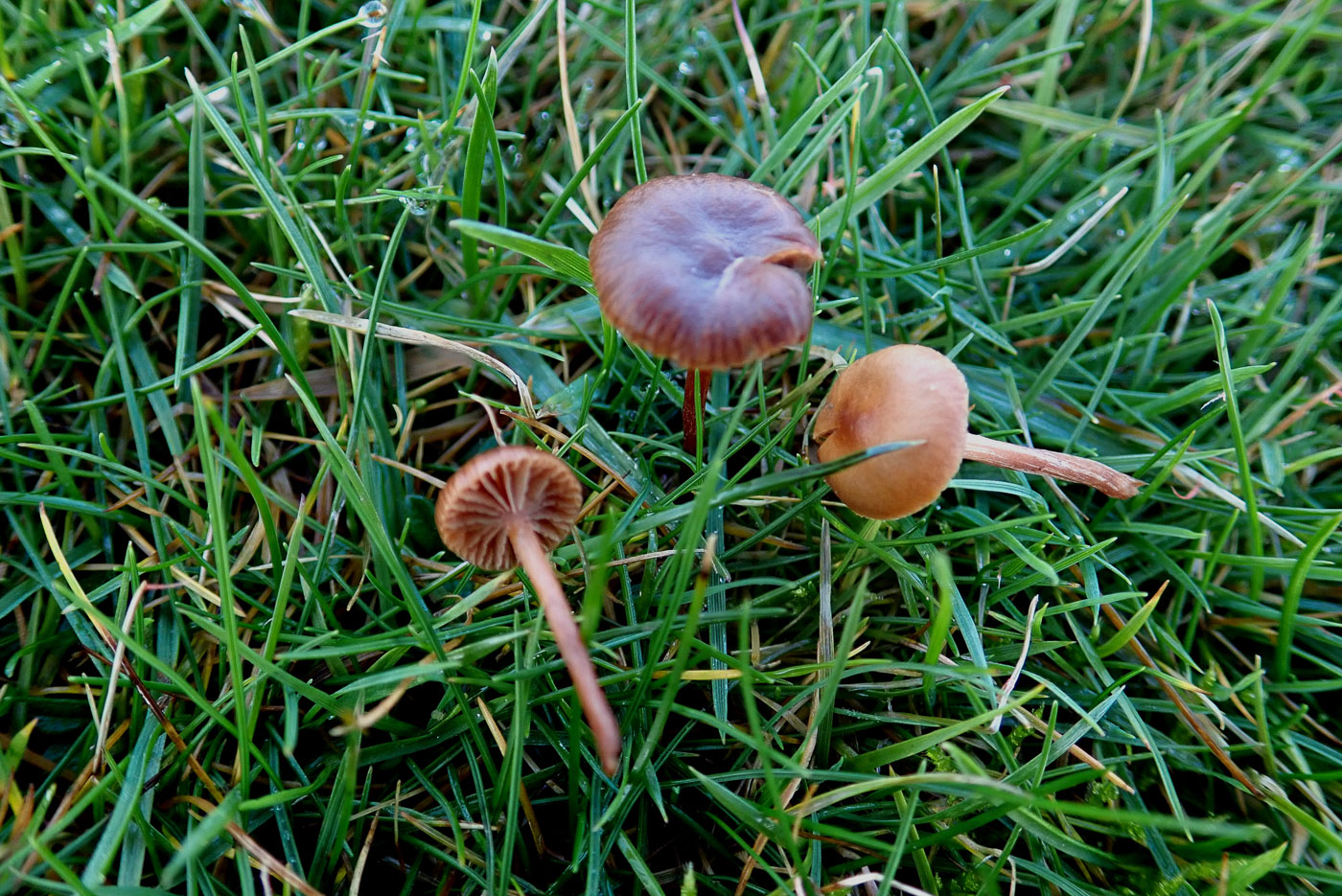 |
November 22nd Psilocybe (= Deconica) montana (Mountain Brownie) 
On the very mossy Gt. Hampden Cricket Pitch Penny C. found quite a few little gatherings of a dark-capped little mushroom with even darker gills and stem which she guessed might be a species of Psilocybe. Several specimens were considerably paler and faded, however, pointing to a distinctly hygrophanous species, and she also noted the rather mottled effect on the gills. At home this took a while to sort out because (a) the genus Psilocybe has now been split and this collection didn't key out under that name, and (b) when I eventually twigged that it might be under Deconica the key was so full of errors in its numbering system that it didn't make any sense! Eventually, by cross referencing, she arrived at this species with a somewhat deceptive name: it is not necessarily alpine but found in moss in heathland / grassland. We have just one previous county record though Penny suspects it is quite common though under-recorded (possibly due to the inefficient and confusing keys available!).
|
November 21st 2020
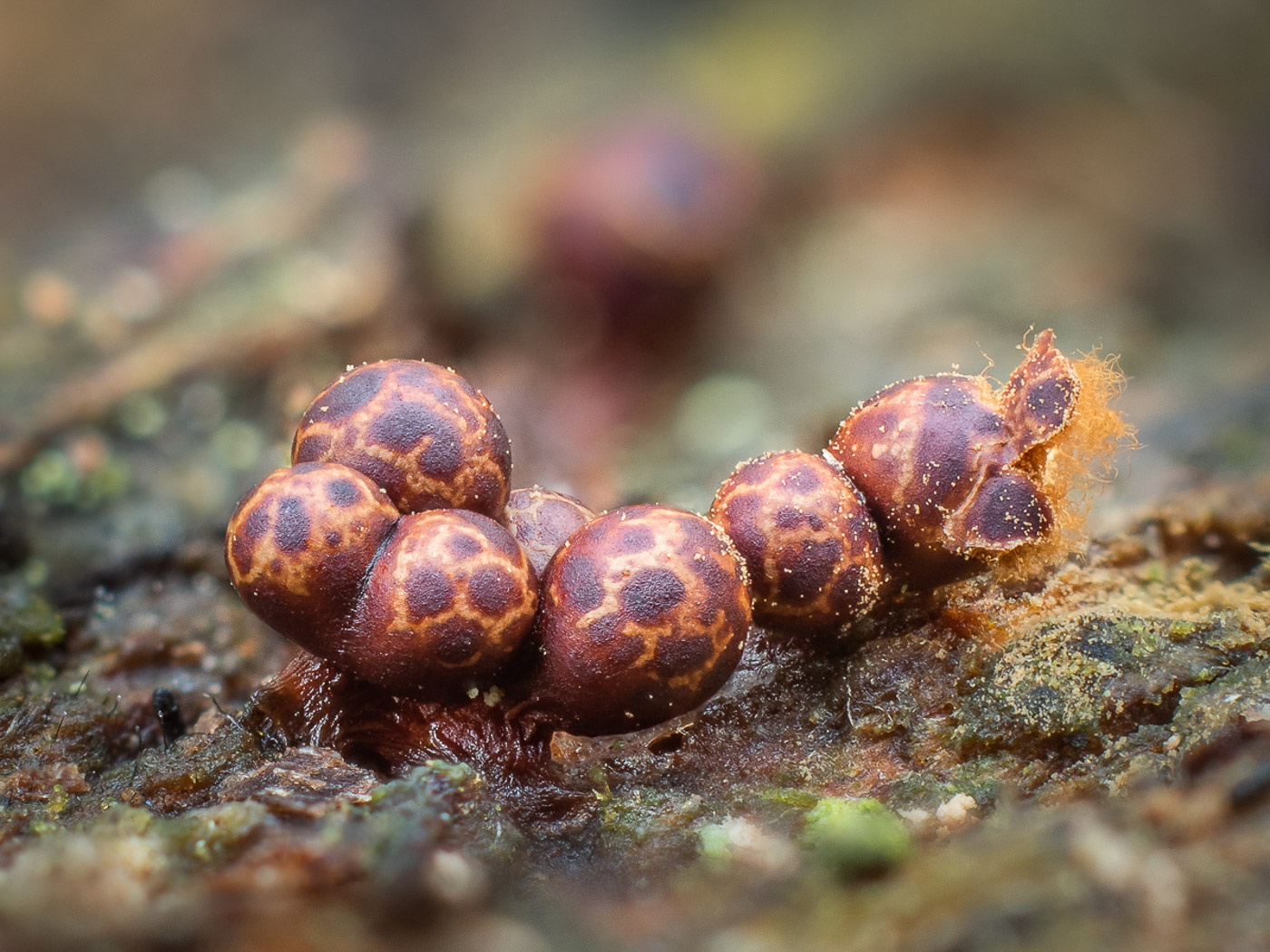 |
November 21st Trichia botrytis (a slime mould with no common name)
In Penn Wood Barry Webb found this cluster of tiny specimens fruiting on fallen Oak. There are many species of Trichia and a scope is nearly always needed to name them but the very distinctive mottled markings seen here are enough to separate it from others.
|

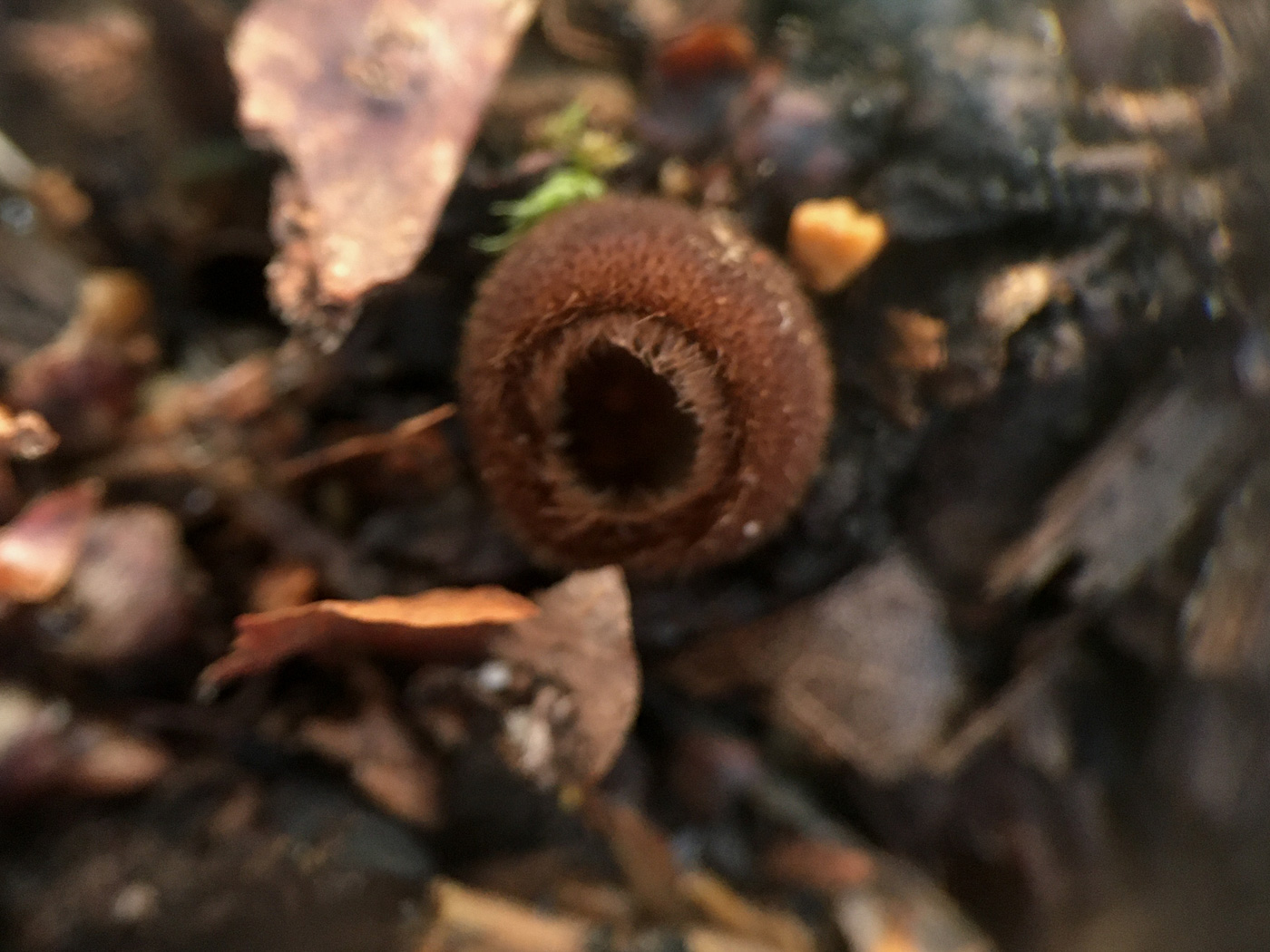 |
November 21st Humaria hemisphaerica (Glazed Cup)
In rotting woodchip at Stoke Poges Memorial Gardens Russell Ness noticed these small brown hairy cups. We have a previous photo dated Sept 11th but this is quite a while ago now! The species is an easy one to identify if you notice the smooth white interior surface which contrasts strongly with the outer surface; cups are usually gregarious and can get to about 2 cm across but are often much small than that.
|
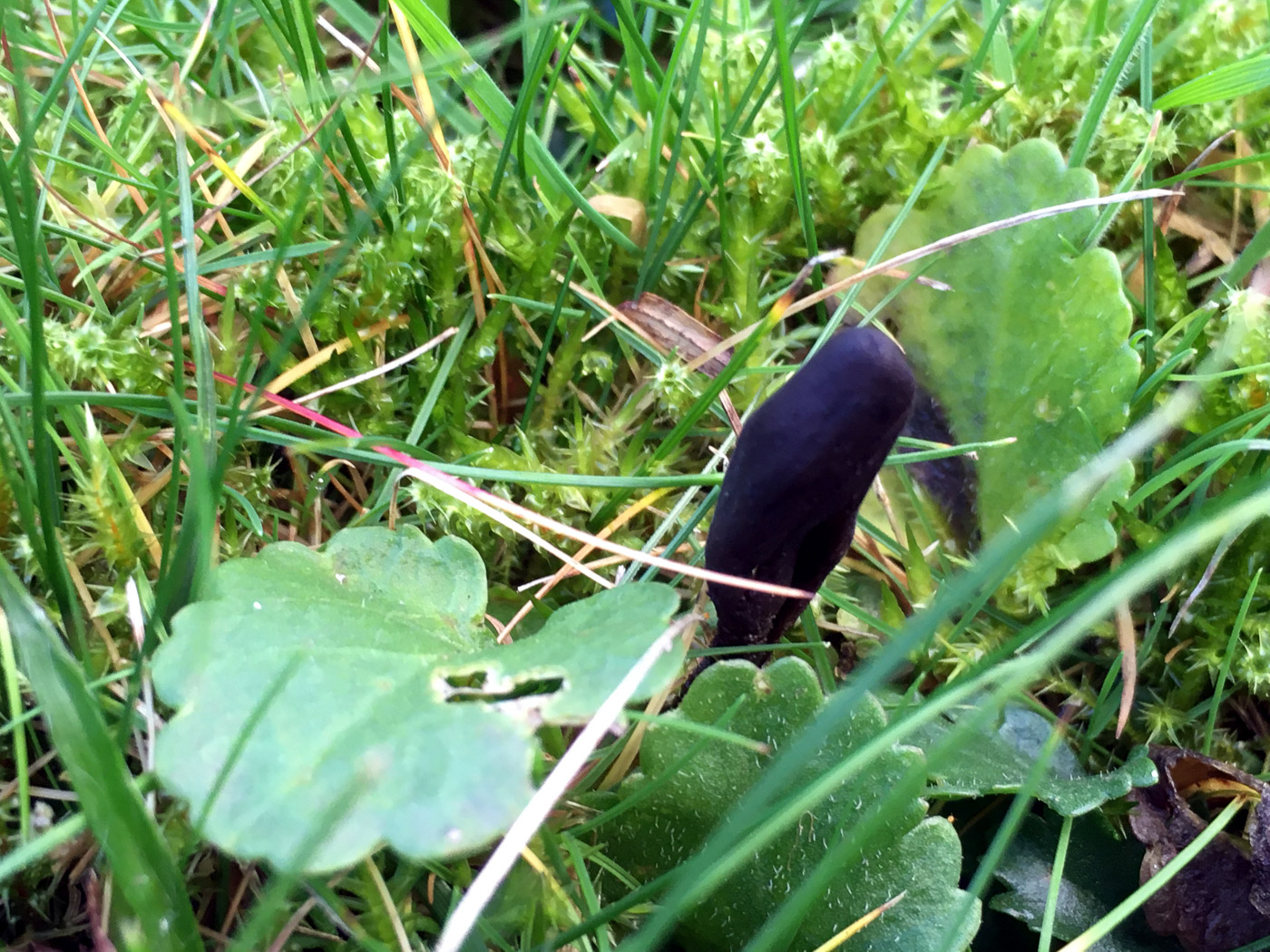
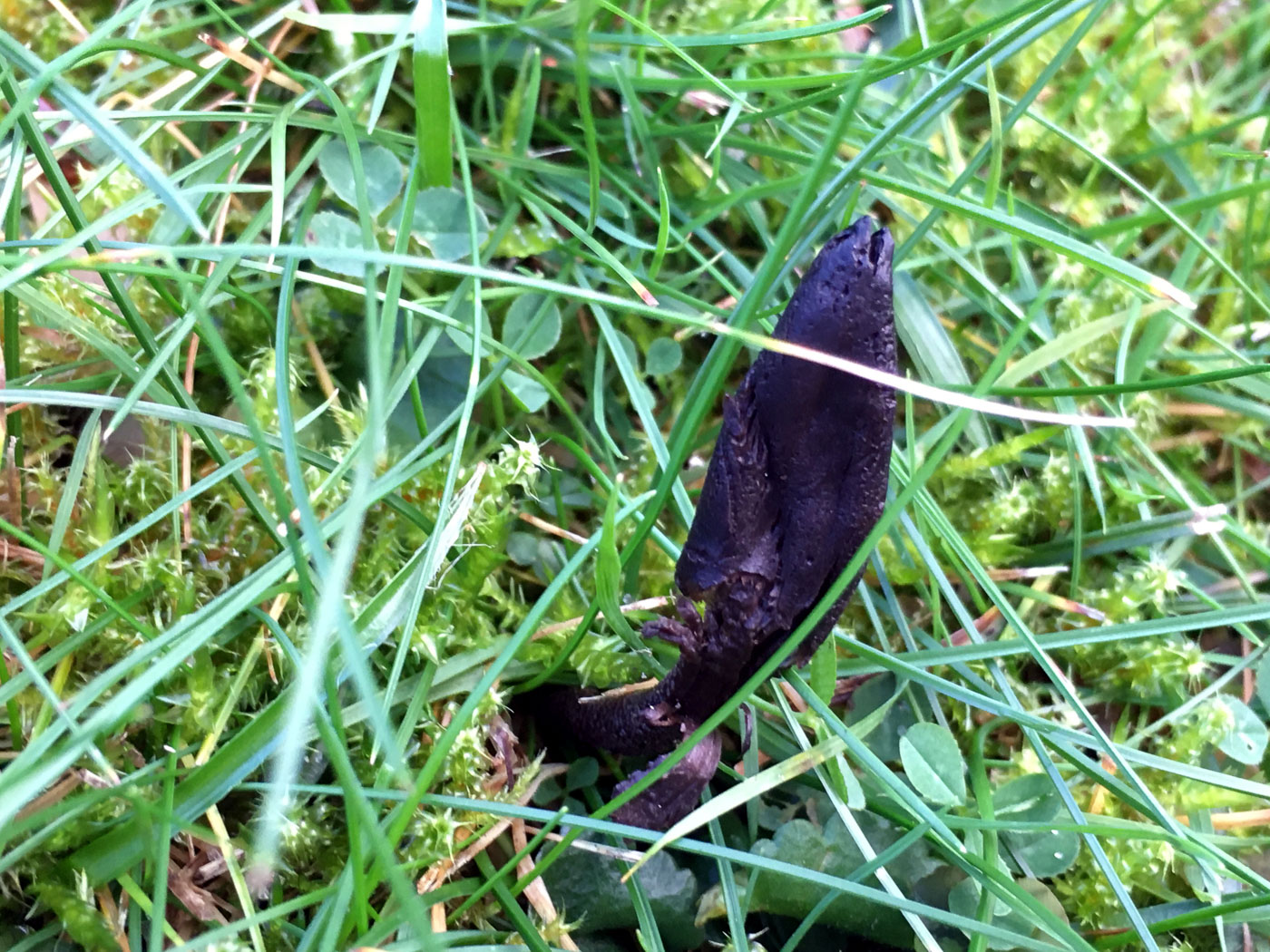 |
November 21st Geoglossum fallax (an Earthtongue with no common name) 
In Prestwood churchyard Russell Ness found this singleton Earthtongue in the mossy grass. These black beauties are not identifiable to species without careful work using a key and a scope, and once supplied with the necessary information Russell was able to work out which species he had. Despite the lack of common name this is apparently one of the commonest Earthtongues though only our second county record!
|
November 20th 2020
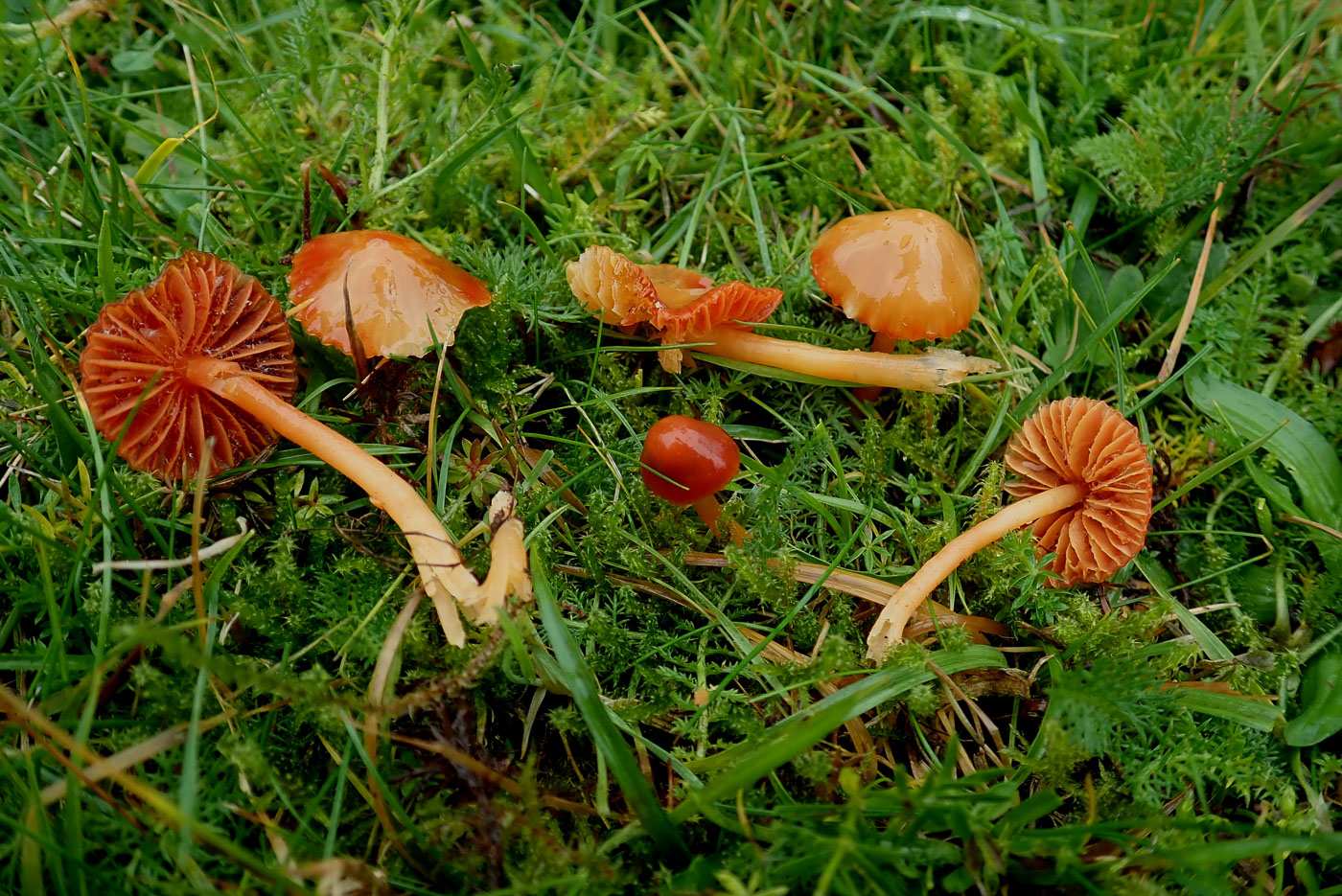
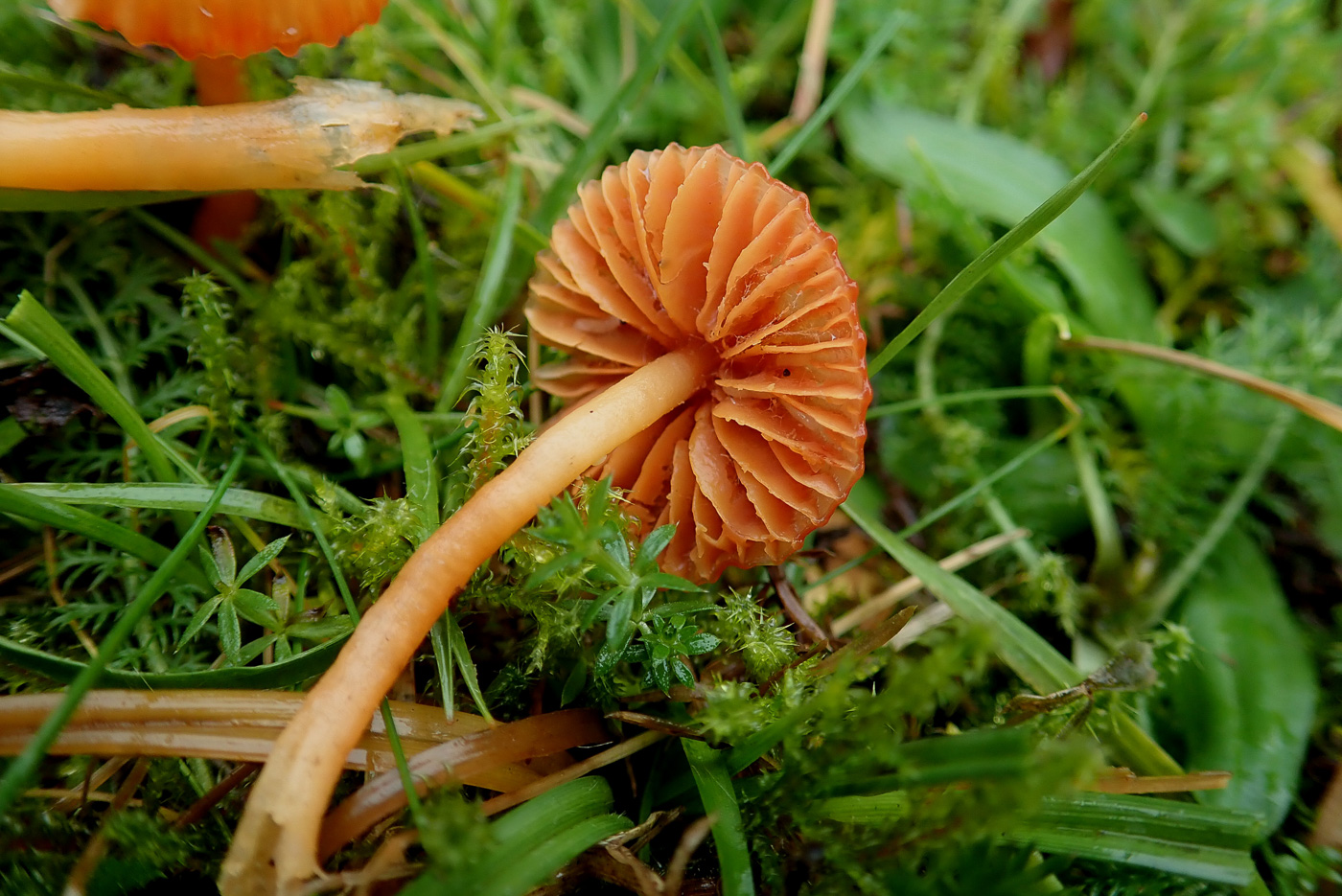
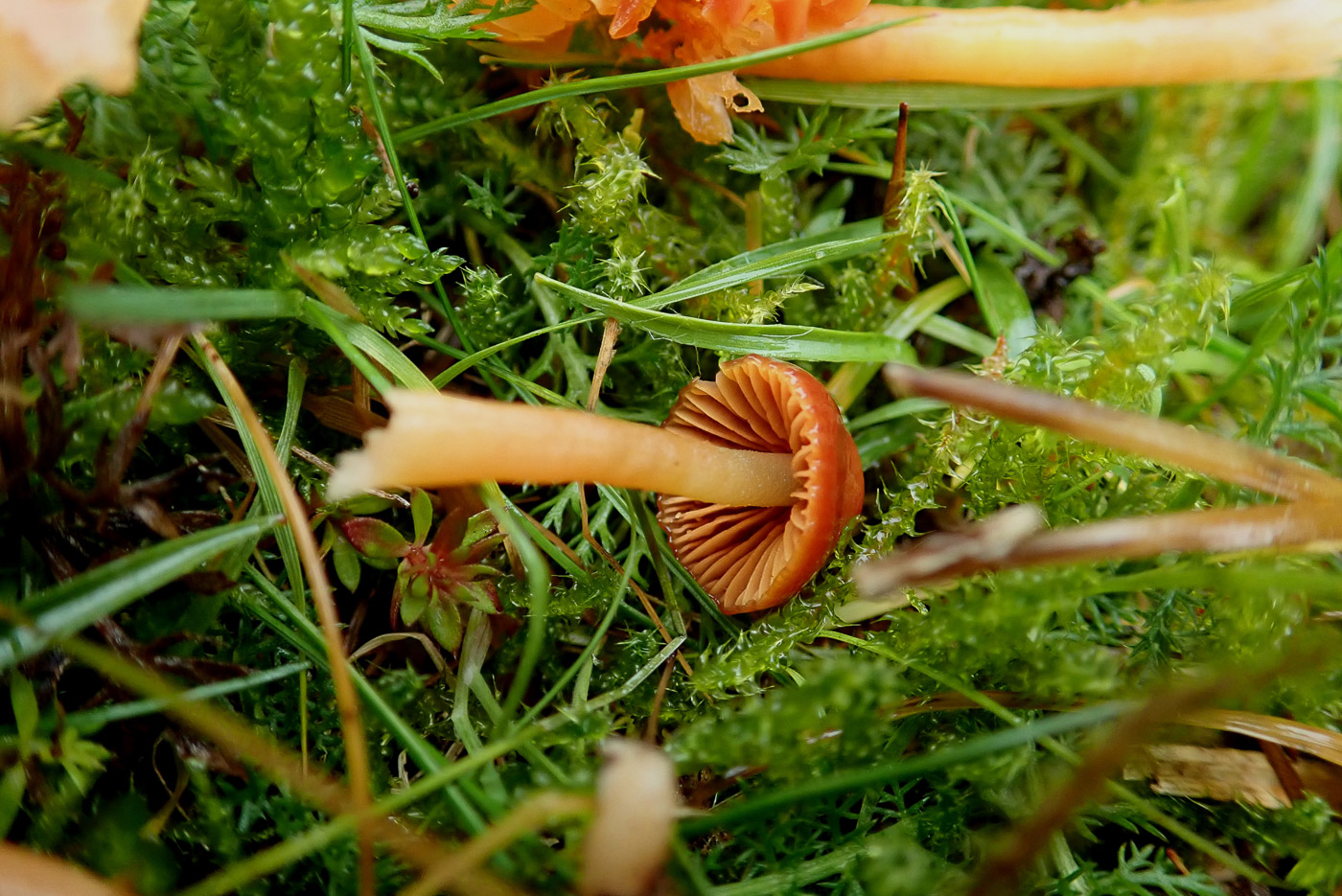 |
November 20th Gliophorus sciophanus (previously placed in synonymy with G. psittacina) (a Waxcap with no common name) 
In St Giles Churchyard Stoke Poges, Penny C. found amongst many Waxcaps a collection which was unfamiliar to her and an unusual colour. All but one specimen were somewhat deteriorating but it was clear that the smallish bright cinnamon rusty orange conical caps with outer half slightly translucently striate were very slimy, as were the stems. She wondered about Gliophorus laetus as a possibility but the adnate gills lacked the glutinous edge of that species; she also noted that there was no hint of green which would have pointed to G. psittacinus. At home the spores were similar to those of G. psittacinus, however, and turning to the descriptions of that species she was reminded of the two rare varieties which were raised to species level in 2014. Today''s collection appeared a good match for one of these: G. europerplexus, but confirmation by DNA sequencing was clearly called for. However, the resulting sequence (received in Jan 2021) showed a close match to G. sciophanus, another extremely rare species in the psittacinus complex and not yet established as on the British list.
|
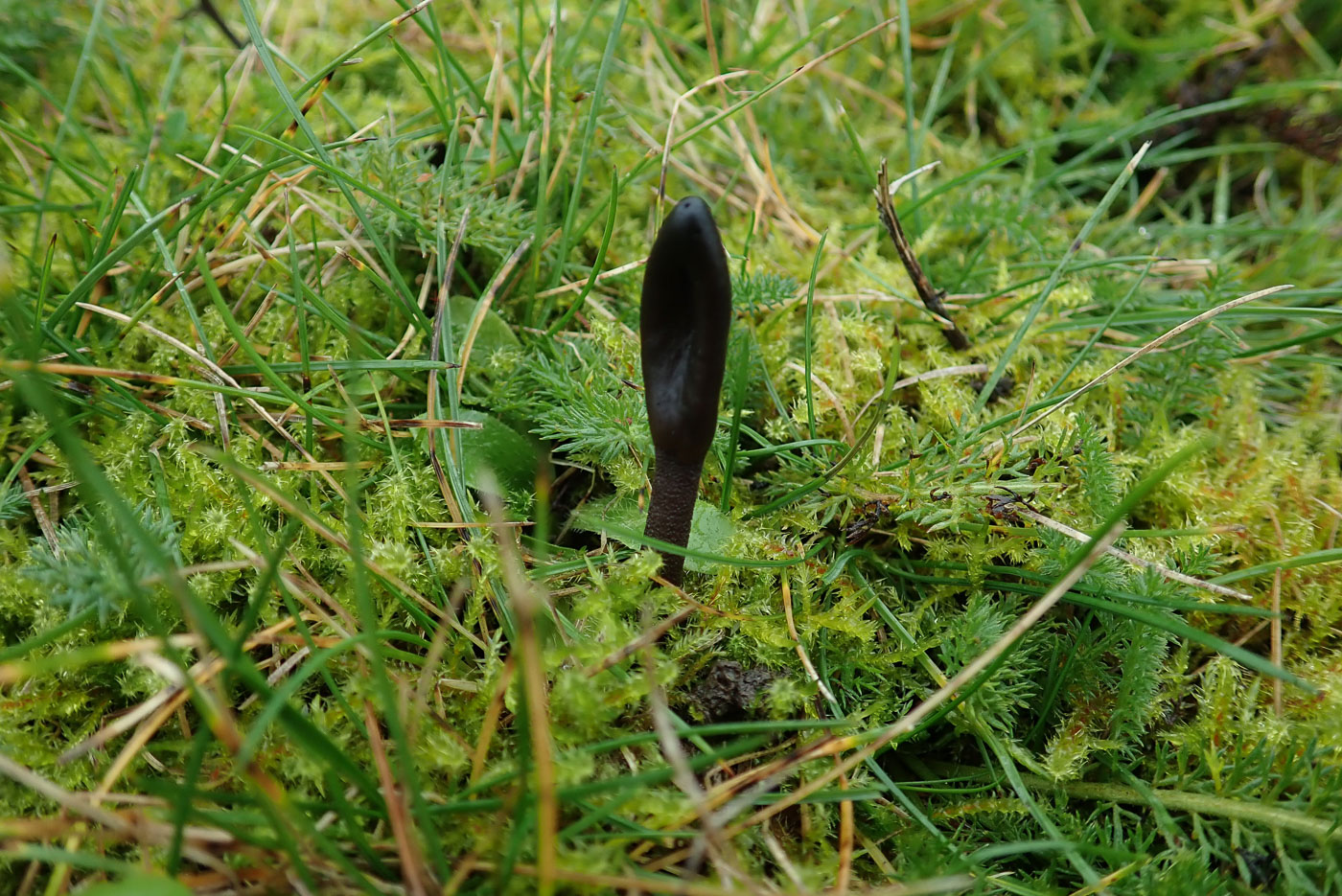 |
November 20th Geoglossum glutinosum (Glutinous Earthtongue) 
Having moved from the adjacent churchyard into Stoke Poges Memorial Gardens, Penny C. found a singleton Earthtongue in a small patch of lawn and assumed that it was likely to be the same species as just found in the churchyard. Not so! Not only was the stem brownish and sticky, but a scope soon revealed very different spores and accompanying cells with no hairs present as in the Trichoglossum from the churchyard. The key was complicated but she was reasonably sure of the determination. We have only one previous county record but this probably reflects the lack of finders because it is a common species. Now is obviously a good time to look out for Earthtongues.
|
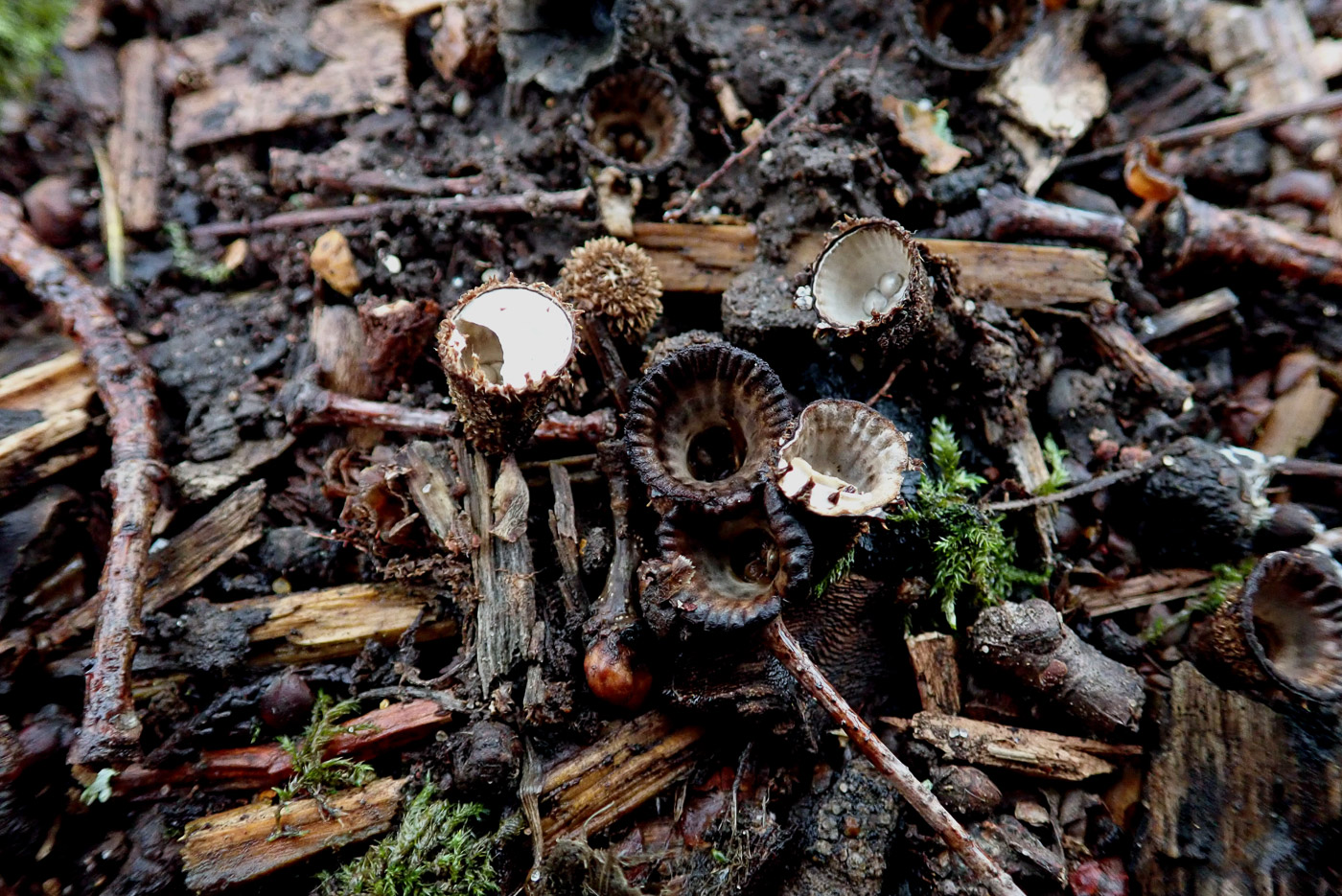
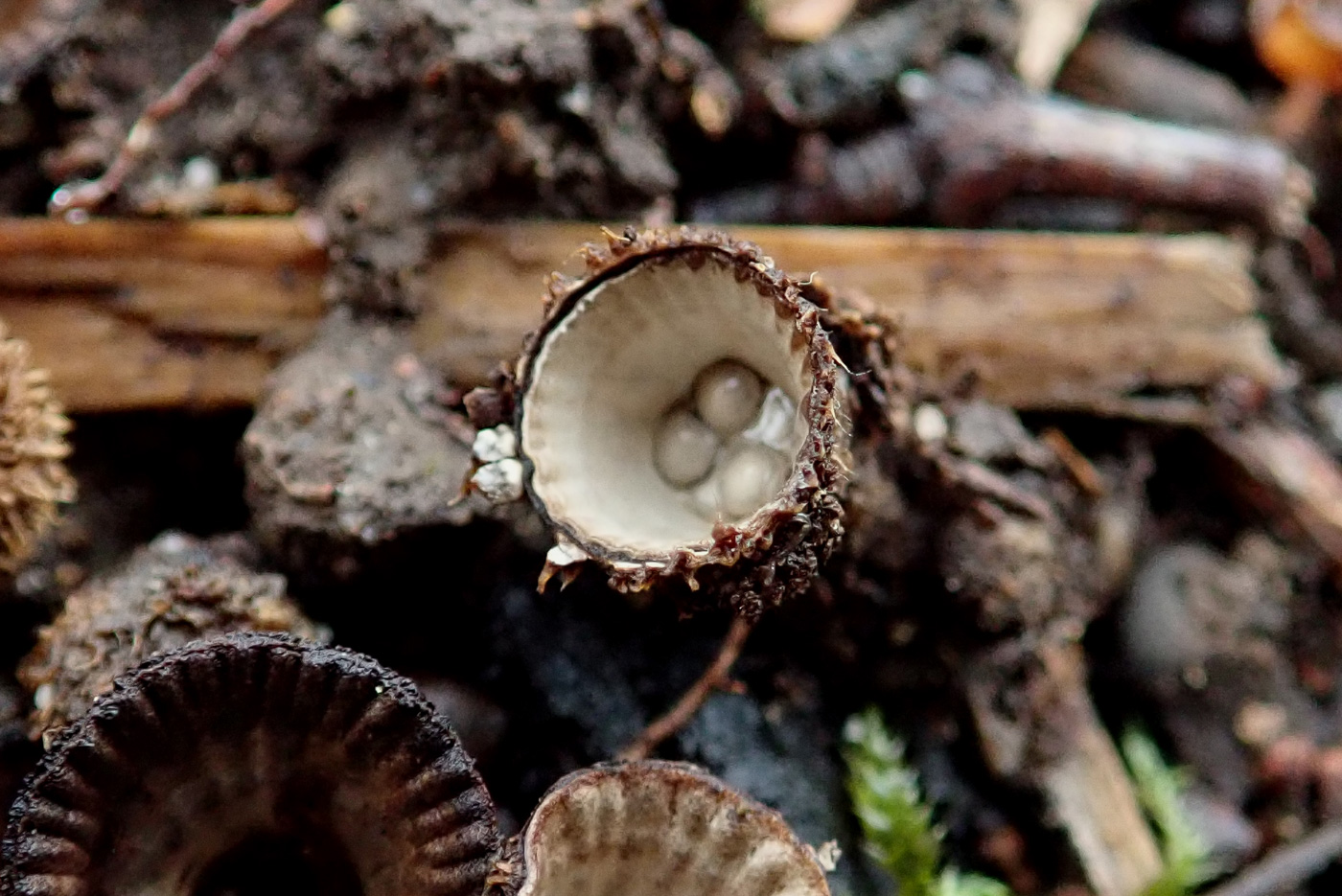
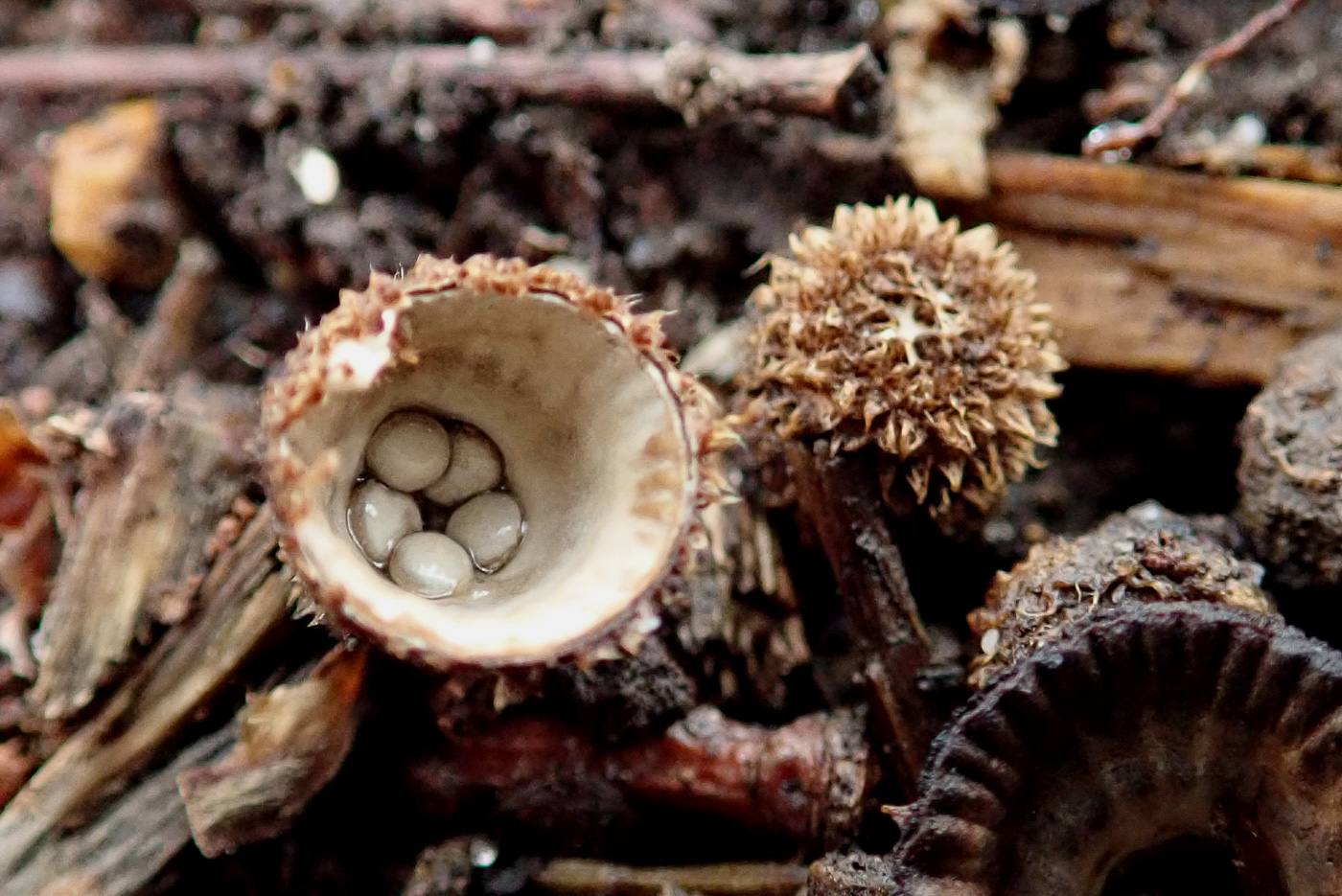 |
November 20th Cyathus striatus (Fluted Birds Nest)
We have an earlier photo of this attractive little species dated Oct 25, but today's collection - spotted in woodchip in Stoke Poges Memorial Gardens by Penny C. - shows various different stages of development. Note the immature brown hairy stage before the 'nest' has opened at all, followed by the nest having a white membranous covering - visible in photo 1 on the far left hand fruit body. This membrane then disappears to reveal the clusters of 'eggs' within which contain the spores which get dispersed by raindrops when mature. This is when the nest takes on its fluted striations around the inner surface. Each nest is well under 1 cm across. What little gems!
|
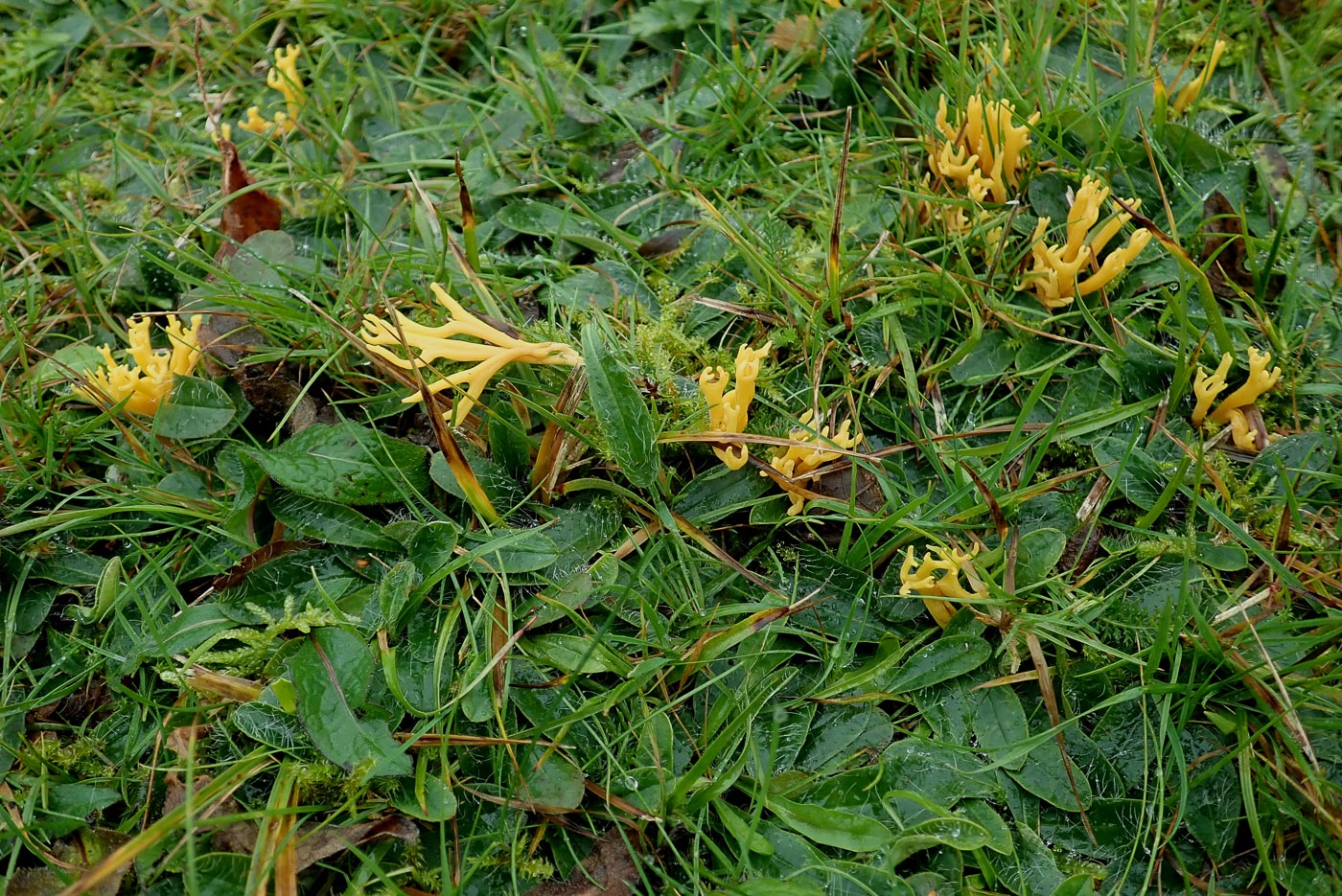 |
November 20th Clavulinopsis corniculata (Meadow Coral)
We have an earlier photo of this species dated Nov 8th, that being the first time it had appeared. Penny C. has now seen it in various different grassy settings and today it was coming up in good numbers in St Giles churchyard, Stoke Poges.
|
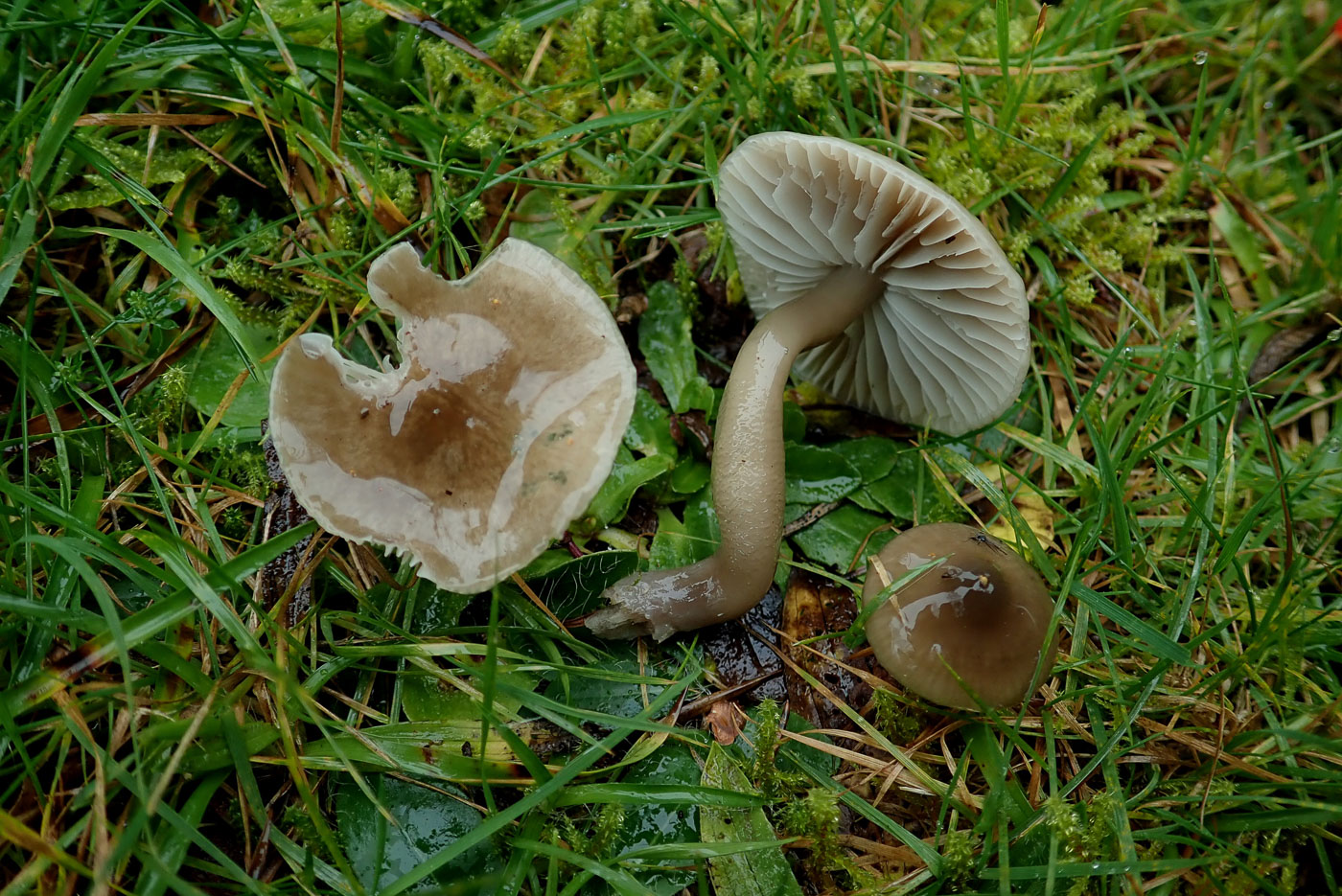
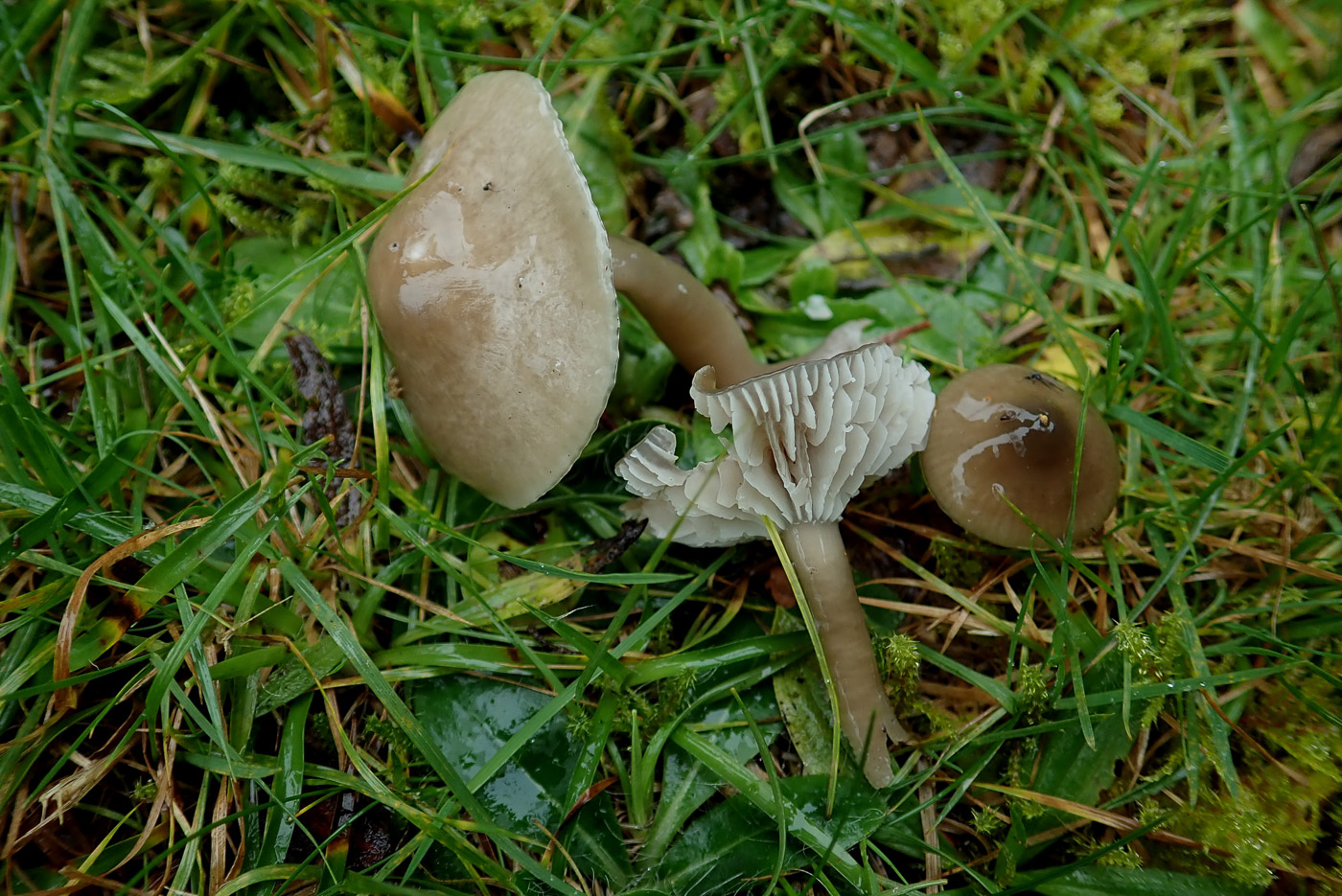 |
November 20th Hygrocybe irrigata (= Gliophorus irrigatus) (Slimy Waxcap)
This is a species Penny C. has been on the lookout for and has so far been missing from our growing list of Waxcaps. It turned up today - just the three fruit bodies - in St Giles churchyard, Stoke Poges. Not rare but occasional, it is possibly the least colourful of our Waxcaps but makes up for the lack of colour by having a good supply of slime, both on the cap and the stem! You might not recognise it as a Waxcap at first in the field, but once you try and pick one up you're left in no doubt: the stem is so slippery it takes some doing!
|
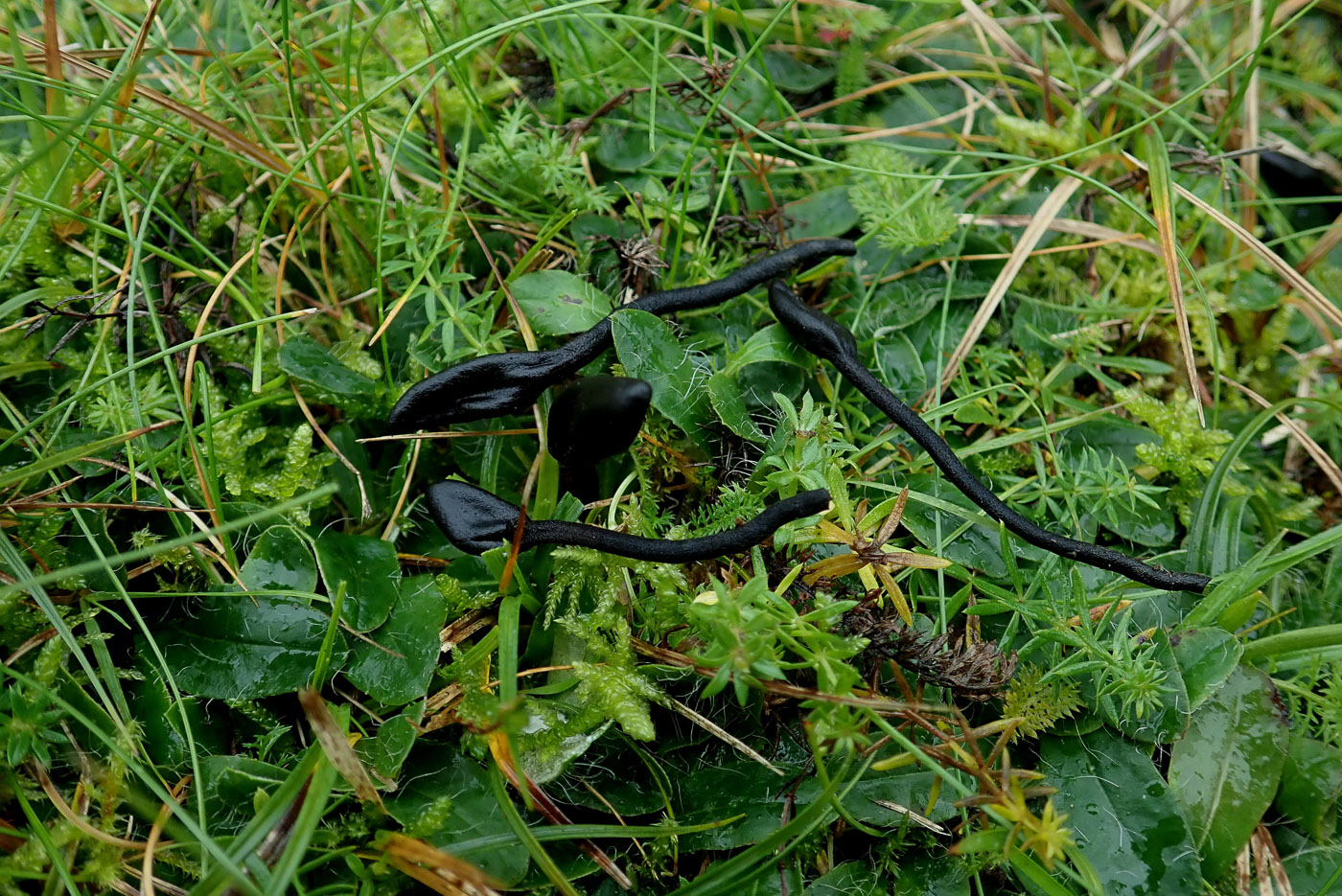
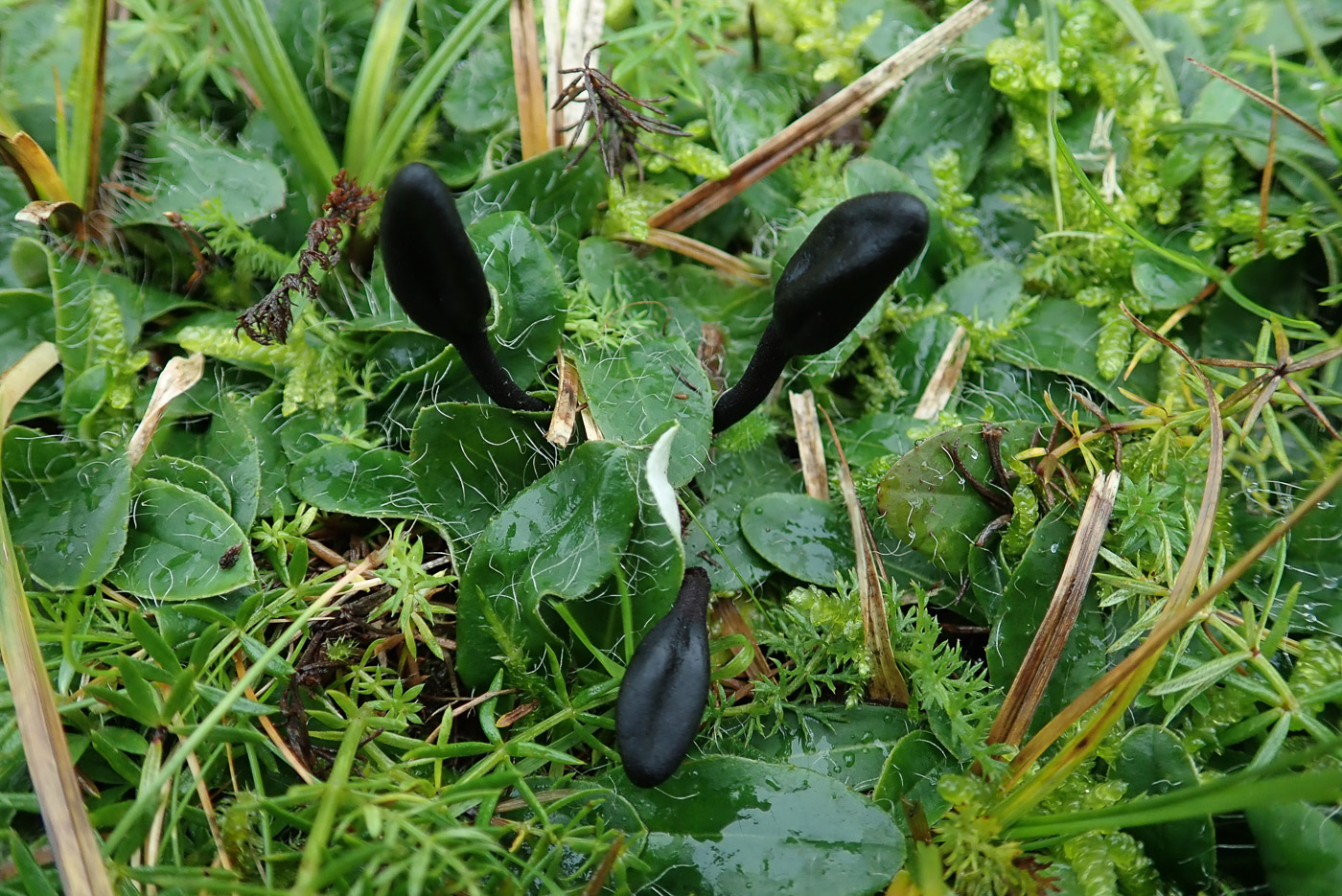 |
November 20th Trichoglossum hirsutum (Hairy Earthtongue) 
Penny C. was delighted to come across several of these in very mossy grass in St Giles churchyard, Stoke Poges. She assumed on collection that these would turn out to be a species of Geoglossum, but under the scope it was clear that the presence of dark brown hairs eliminated that genus and the spores were suitably multiseptate thus confirming this determination. We have a handful of county records but not from this part of the county nor since 2008. It tends to be found in late autumn to winter, so one to look out for now in suitable mossy grassy habitats.
|
November 19th 2020
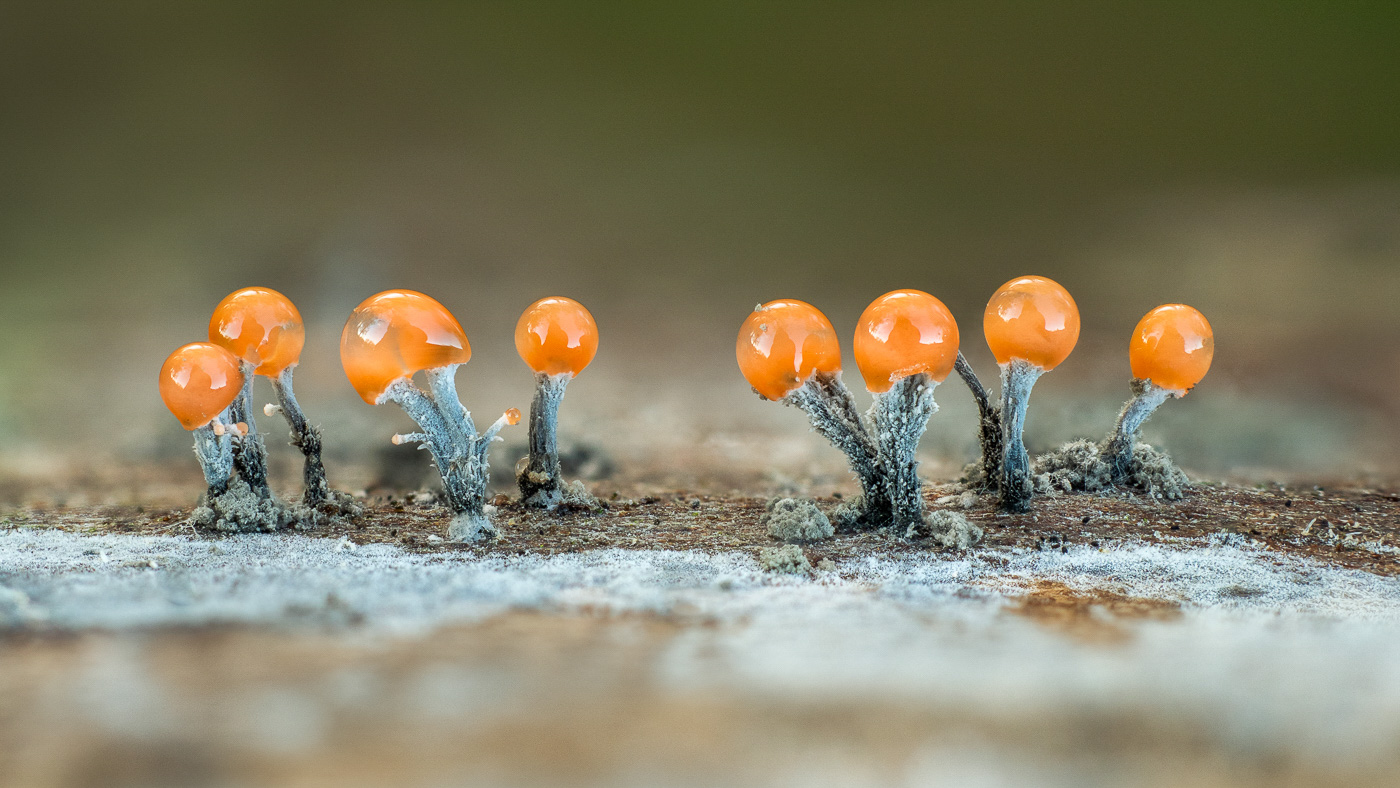 |
November 19th Stilbocrea (= Nectria) gracilipes (a fungus with no common name)
On the underside of a fallen Elm branch in Hedgerley Green Barry Webb found this intriguing fungus which - for obvious reasons - he initially thought was likely to be a species of Slime Mould, but not so. These tiny fruiting bodies were only 3-4 mm tall and the orange tops Barry described as almost liquid. At a complete loss as to what it might be, Penny C. trawled through possible sources of photos online to find anything at all similar and eventually hit lucky! Information, however, was in short supply but it appears that this could be an early asexual stage of a species of Nectria (as in the genus of the very common Coral Spot). She could only trace one previous British record from 1998!
|
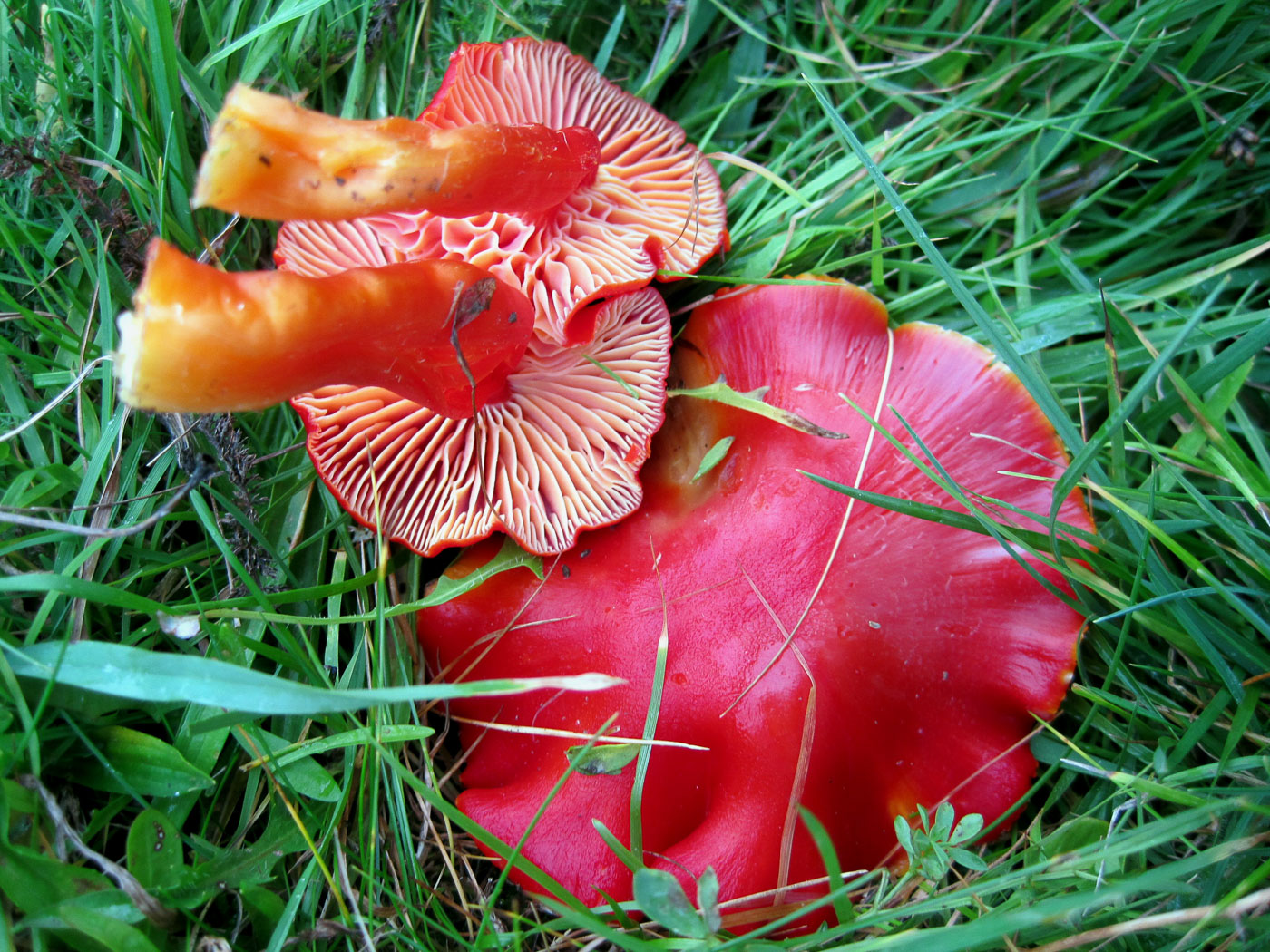
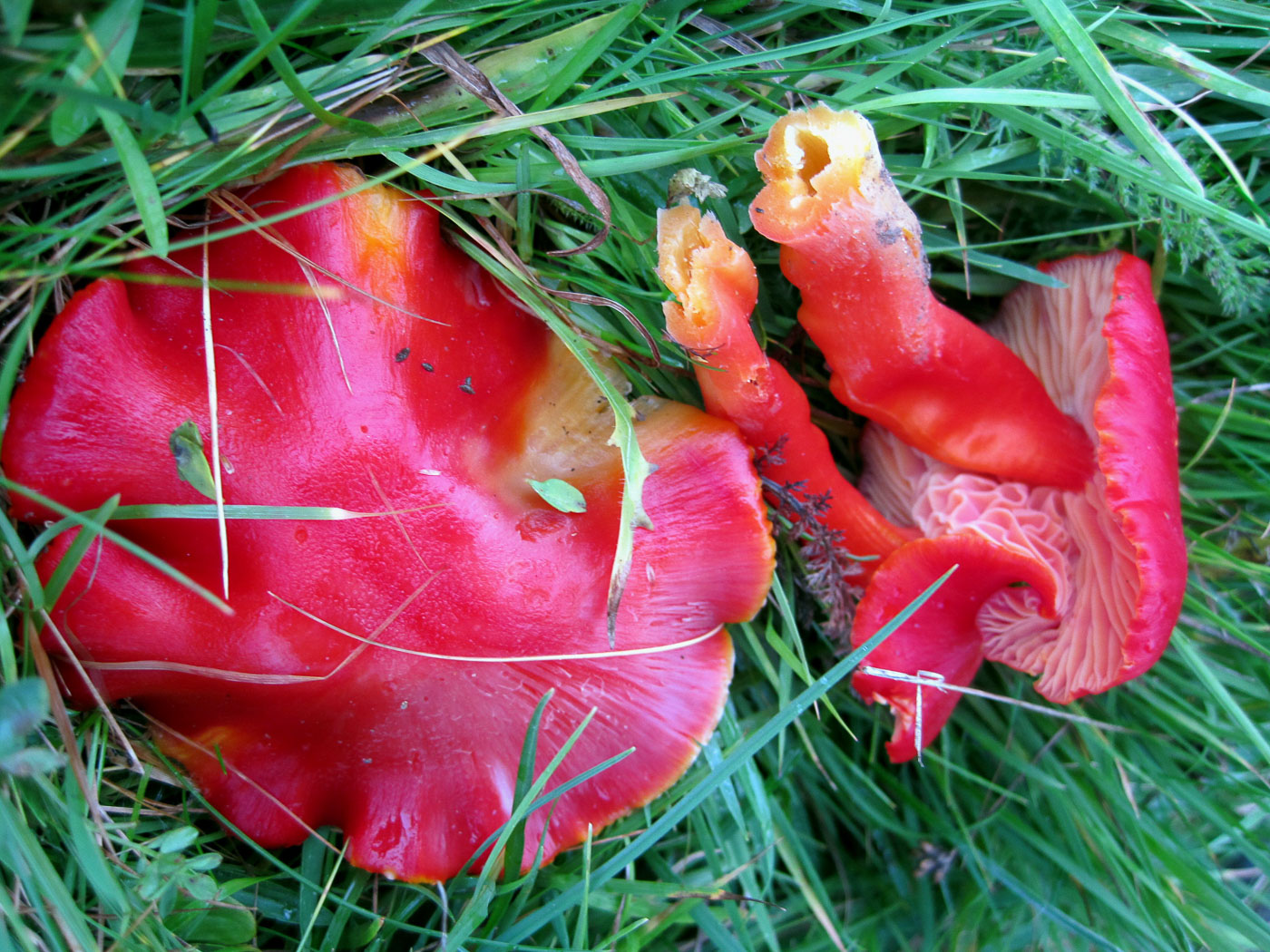 |
November 19th Hygrocybe coccinea (Scarlet Waxcap)
Whilst walking on Brill Common Joanna Dodsworth found these very large and stunning Waxcaps. The caps were up to 6.5 cms across and stems were chunky and described by Joanna as somewhat twisted and compressed, concolorous with the vivid red caps though yellowish at the base. She was hopeful that this might be the rare Hygrocybe splendidissima, a species rather like an overgrown H. coccinea which as it dries develops a smell of honey similar to H. reidii. We sent a sample for sequencing because if confirmed it would have been new to the county. Sadly, however, its sequence matched that of the common H. coccinea (Jan 2021) despite its impressive size. See also collections dated Nov 1st and 12th for more 'normal' sized specimens.
|
November 18th 2020
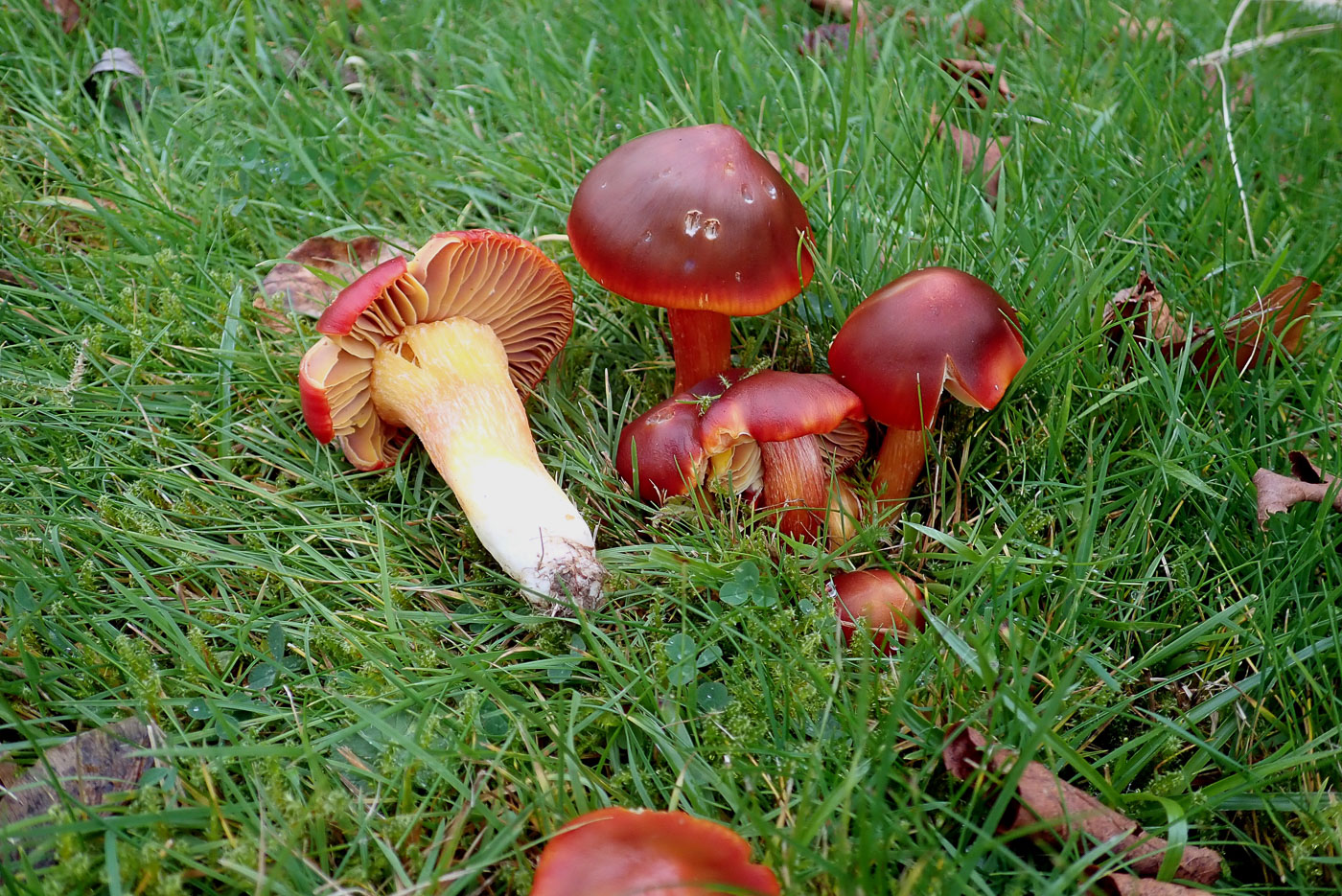 |
November 18th Hygrocybe punicea (Crimson Waxcap)
If you are unfamiliar with this quite rare, impressive and beautiful species, Penny C. recommends a visit now to Prestwood churchyard where it is showing well as seen in her photo today. Her earlier photo, dated Nov 13, is overshadowed by today's collection of perfect specimens. (If you'd like the exact location for them contact Penny.)
|
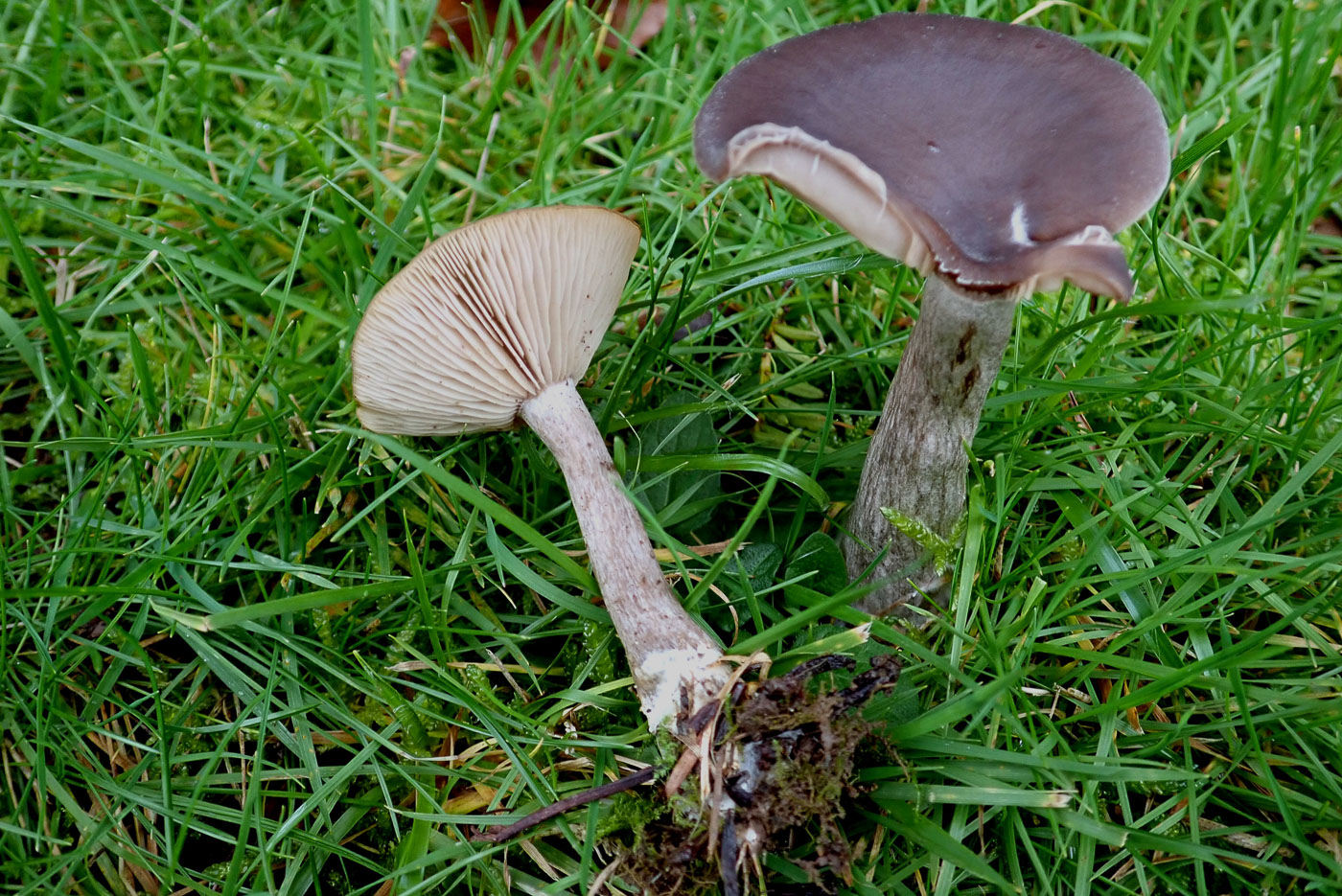 |
November 18th Pseudoclitocybe cyathiformis (Goblet)
This species, found in short grass in Prestwood churchyard, is a typical quite common late season fruiter. We have an earlier collection dated Oct 24 which was in moss on a stump in woodland but it is more often found in grassland. The goblet shape, strongly decurrent gills and dark greyish brown cap makes it quite an easy species to name in the field.
|
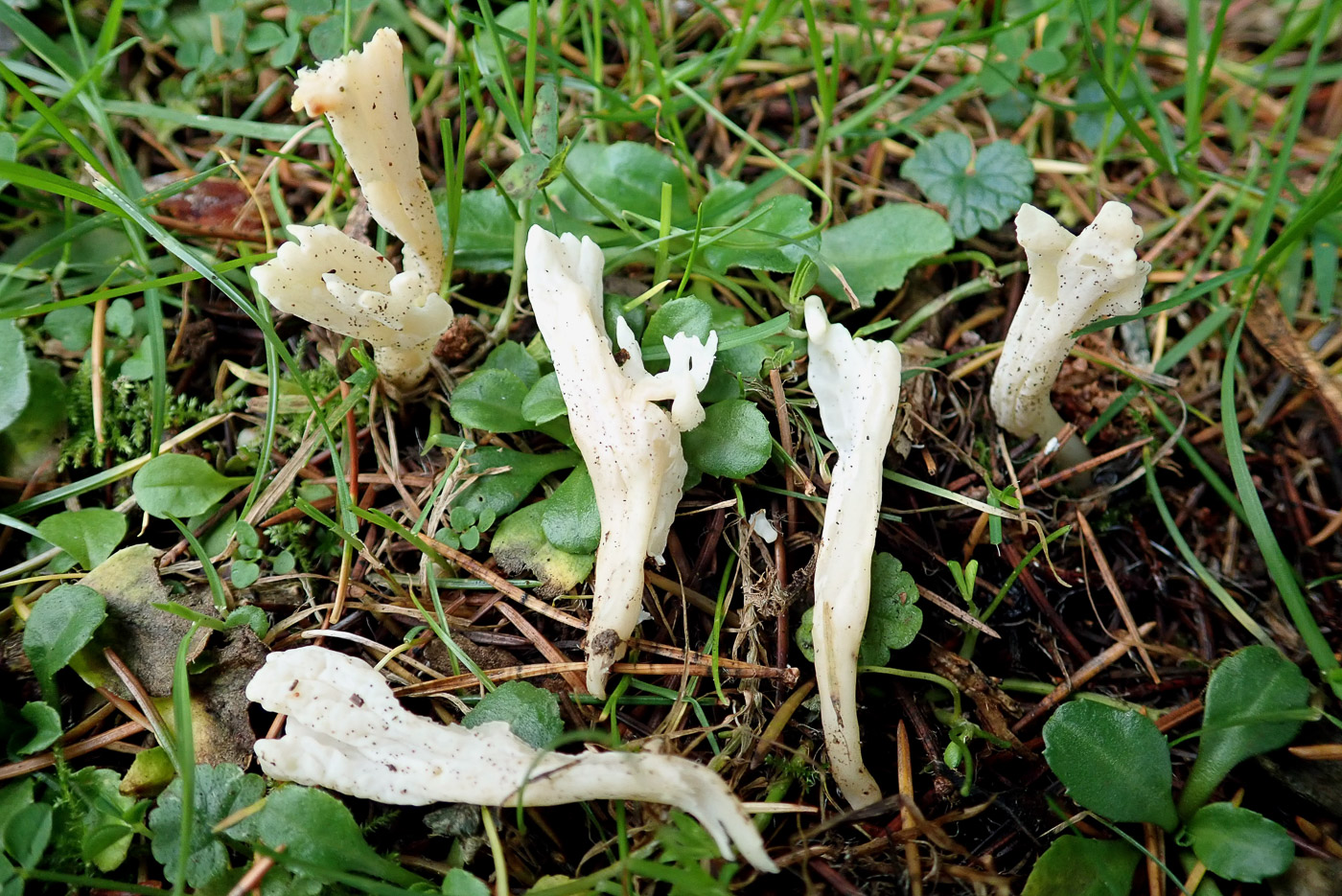 |
November 18th Clavulina rugosa (Wrinkled Club) 
This is normally a common grassland species but seems to have been pretty scarce so far this season. We have just a singleton club dated Nov 05, so it was good to see more specimens today in a piece of lawn under Pine close to Prestwood churchyard, found by Penny C. This collection shows the species quite well though it can get considerably taller than these were, up to 8 - 10 cm high - today's were only about half that.
|
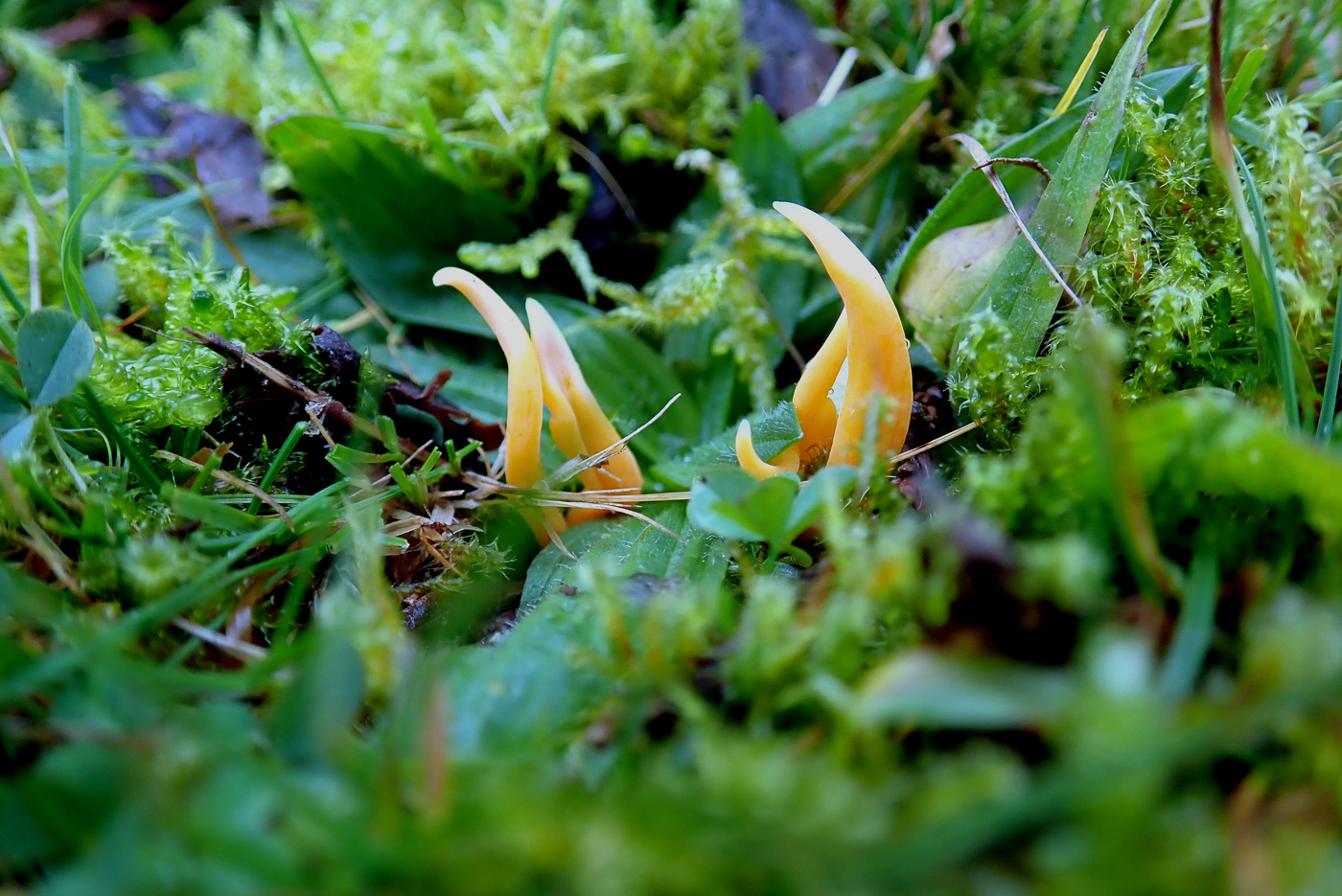 |
November 18th Clavulinopsis laeticolor (Handsome Club) 
In Prestwood churchyard today Penny C. found some rather short and bright orange clubs which she thought might be worth checking just in case they were a different species. We have two of the three common Clavulinopsis species on our list already and as luck would have it today's proved to be the third. It's all down to spore shape and size and whether the spores have a large apiculus or not.
|
November 17th 2020
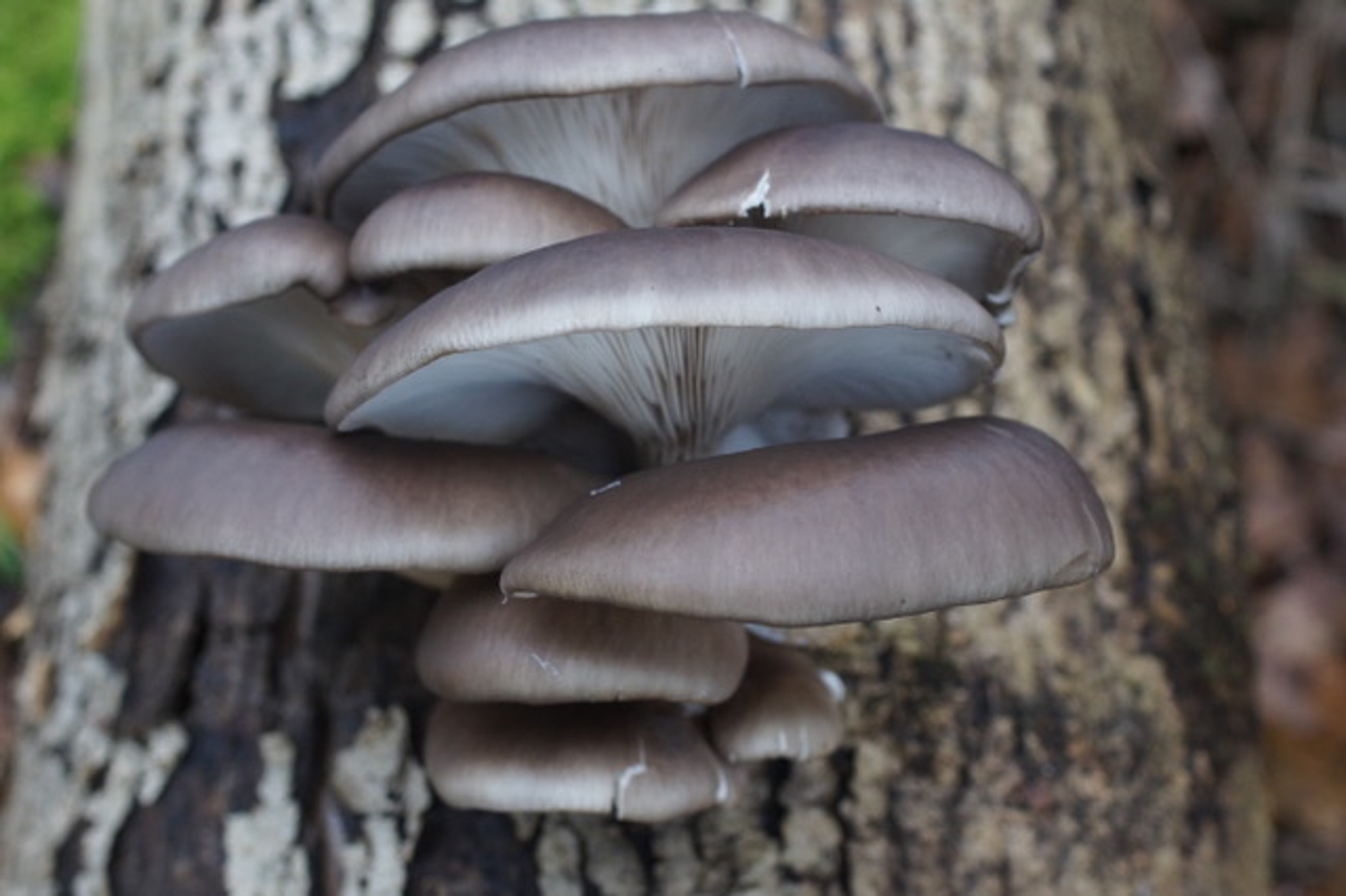
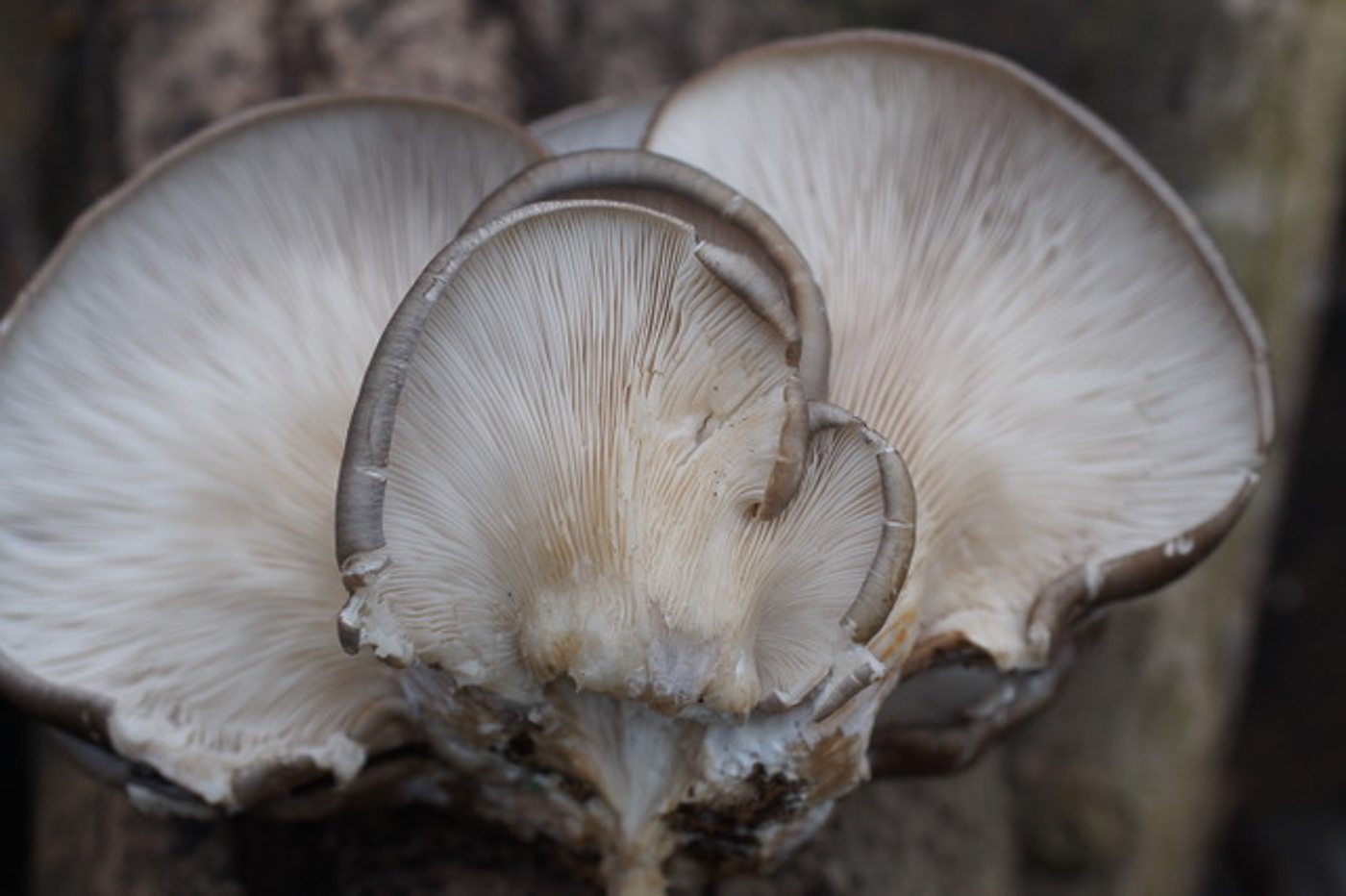 |
November 17th Pleurotus ostreatus (Oyster Mushroom)
Bob Simpson found this photogenic cluster in Salden Wood fruiting as he says it does every year on an old decaying Ash. Yes, we have previous photos, dated Sept 21 and Oct 27, but it's good to know its still around this late in the season.
|
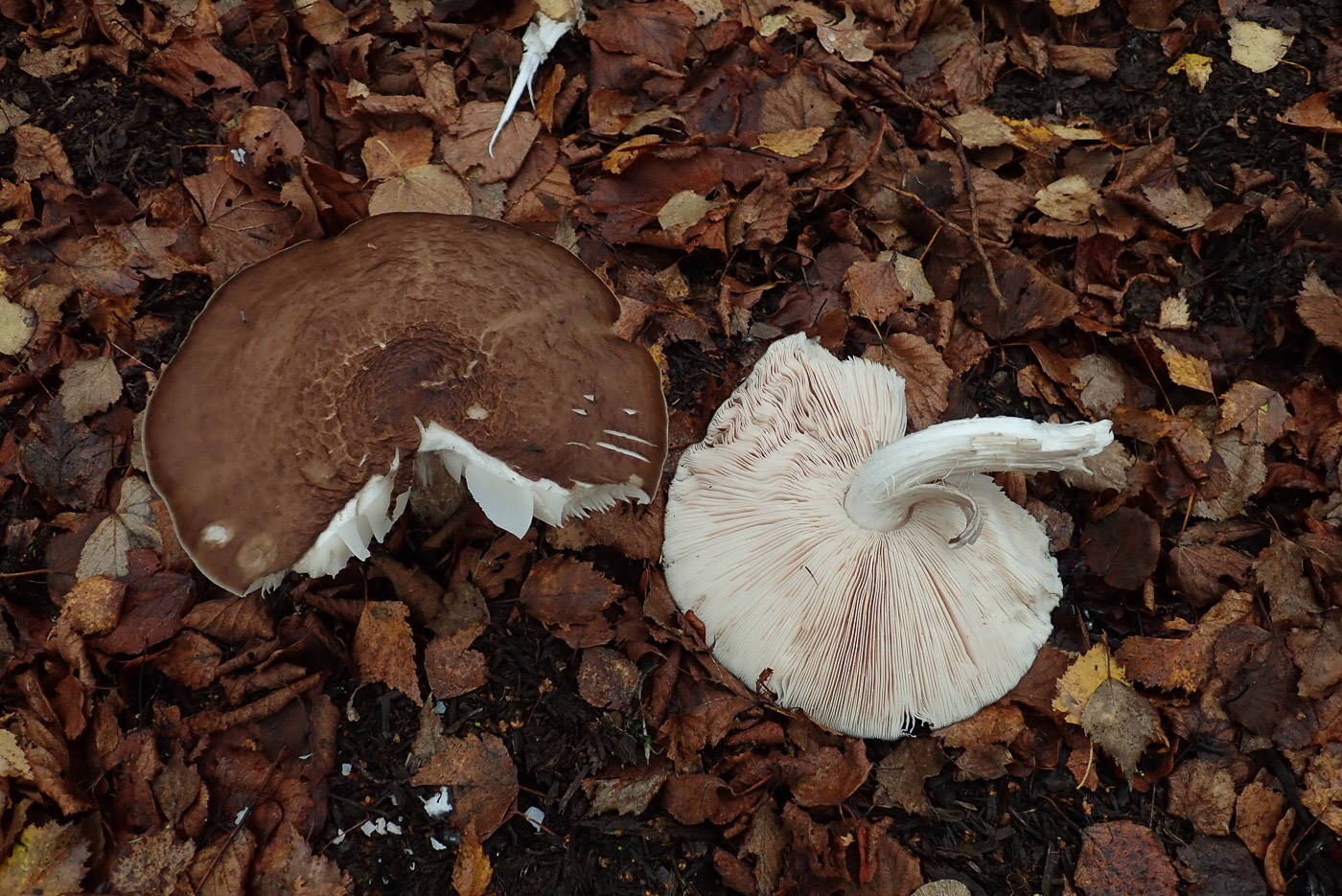 |
November 17th Pluteus cervinus (Deer Shield) 
At Turville Heath today Penny C. found three fungal giants, of which this was the first. On the woodchip pile which she regularly checks were two of the largest examples of this species she'd ever seen. Normally getting to about 12 cm across at most, these were wider than her hand span making them about 20 cm across. To make sure she was correct she checked a small piece of cap at home and sure enough the gill edge revealed the typical cells which confirm the species. What whoppers!
|
 |
November 17th Clitocybe (=Infundibulicybe) geotropa (Trooping Funnel)
After the Giant Pluteus at Turville Heath Penny C. came across three enormous Trooping Funnels, so added them to her photos for the day. We already have various photos of this species at different stages of development and it is not unusual to find them looking exactly like these today with caps measuring about 15 cm across.
|
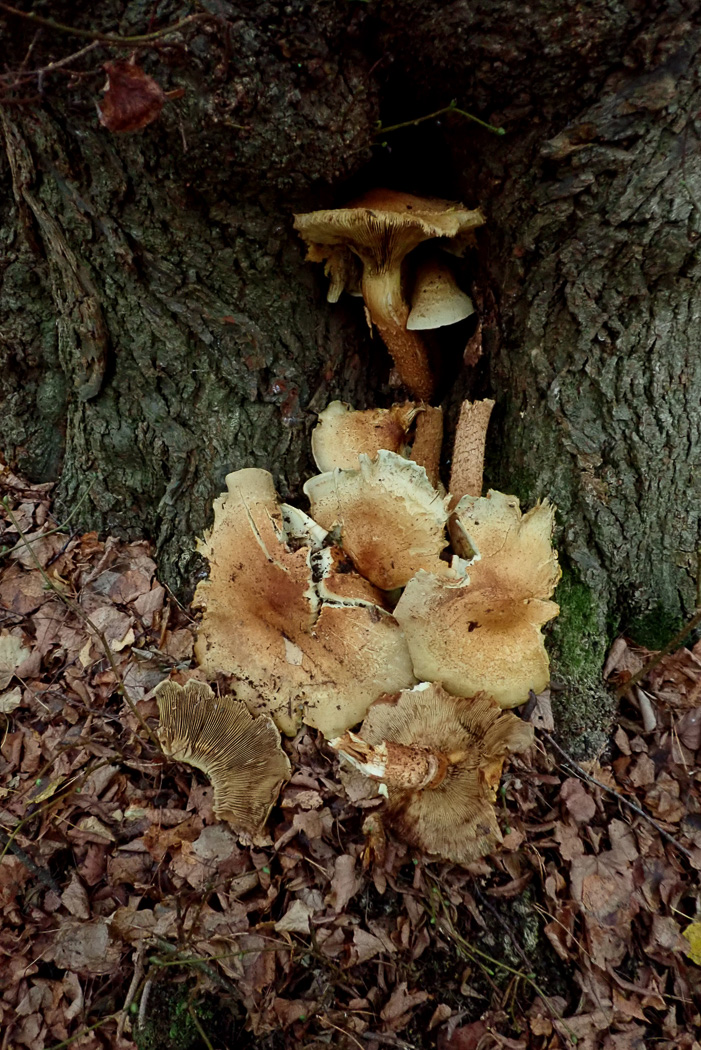 |
November 17th Pholiota squarrosa (Shaggy Scalycap)
This was the third giant of the day at Turville Heath found by Penny C. - a cluster of huge caps at the base of a small leaved Lime. From the bottom of the cluster to the top must have measured over 40 cm. So we now have photos of this species at all its various stages (see Oct 1st for much younger specimens.)
|
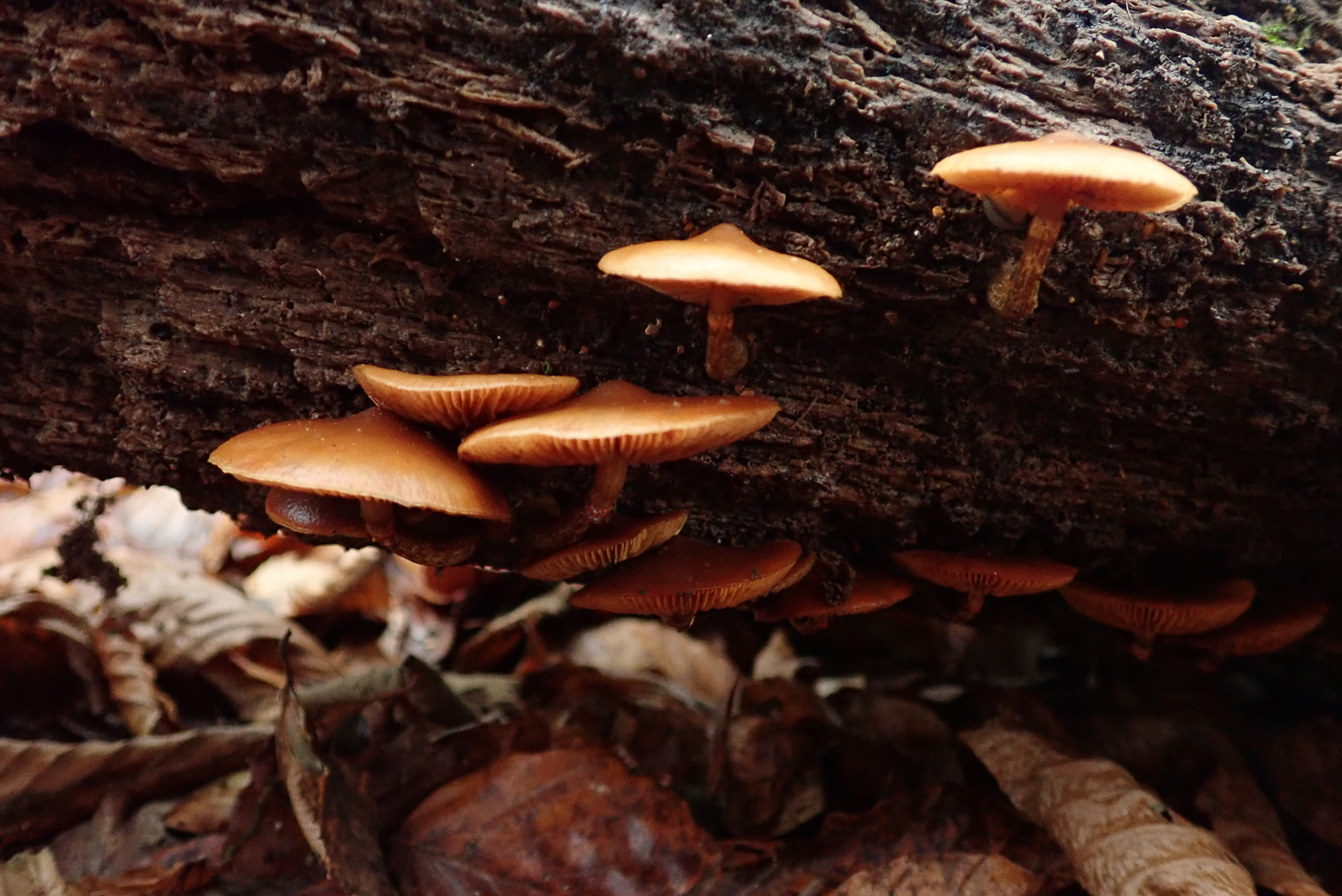
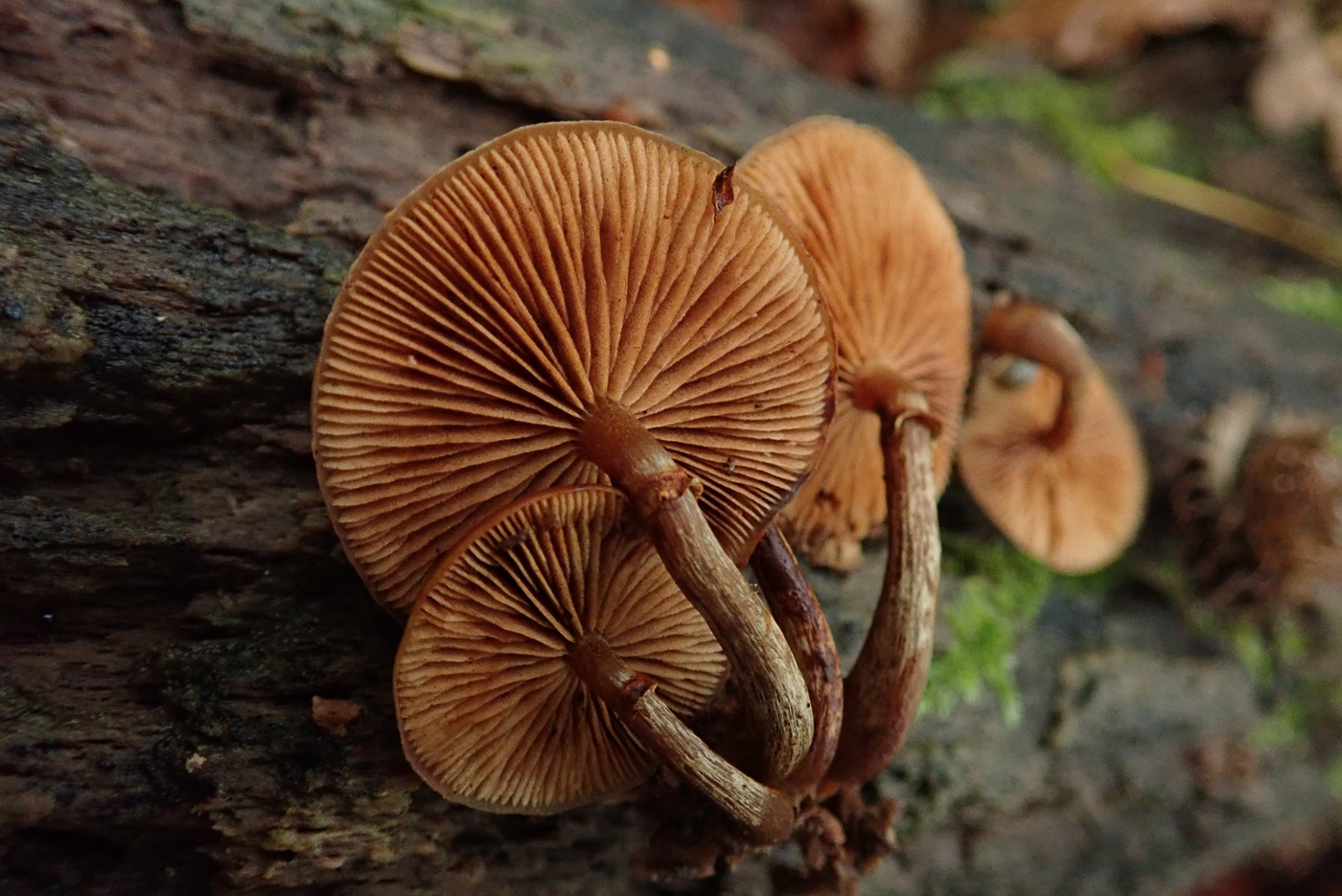
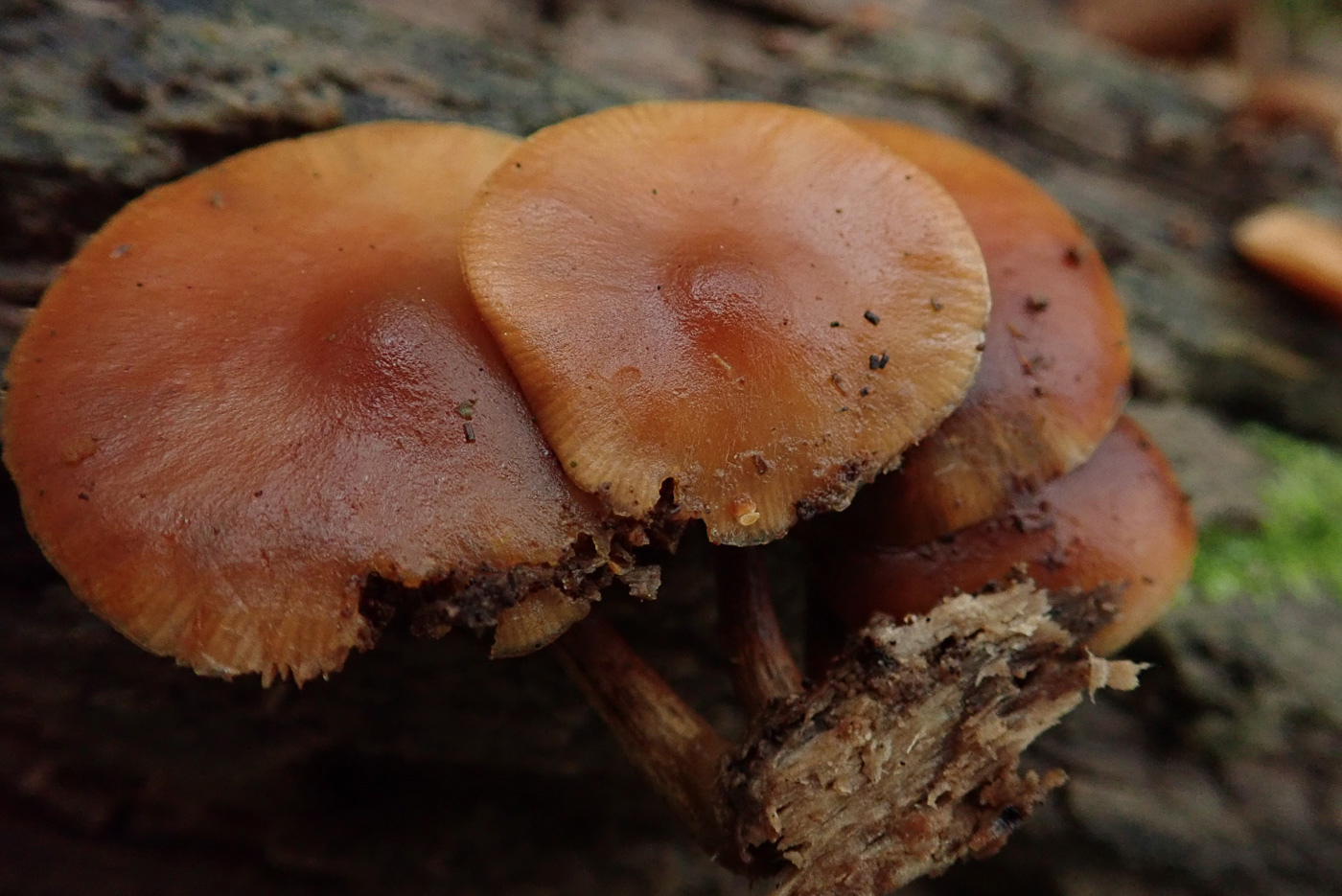 |
November 17th Galerina marginata (Funeral Bell)
This is a late season species and we have an earlier collection dated Nov 11th but of a rather inaccessible collection. These today at Turville Heath, found by Penny C., were also rather awkwardly placed on a fallen Beech branch, but were able to be extricated to demonstrate the important features which make the species nameable in the field. The caps are about 3 cm across and shiny rusty brown, the gills are concolorous and the stem has a distinct ring. These features together with the late season fruiting on deciduous wood in tight clusters should make determination possible.
|
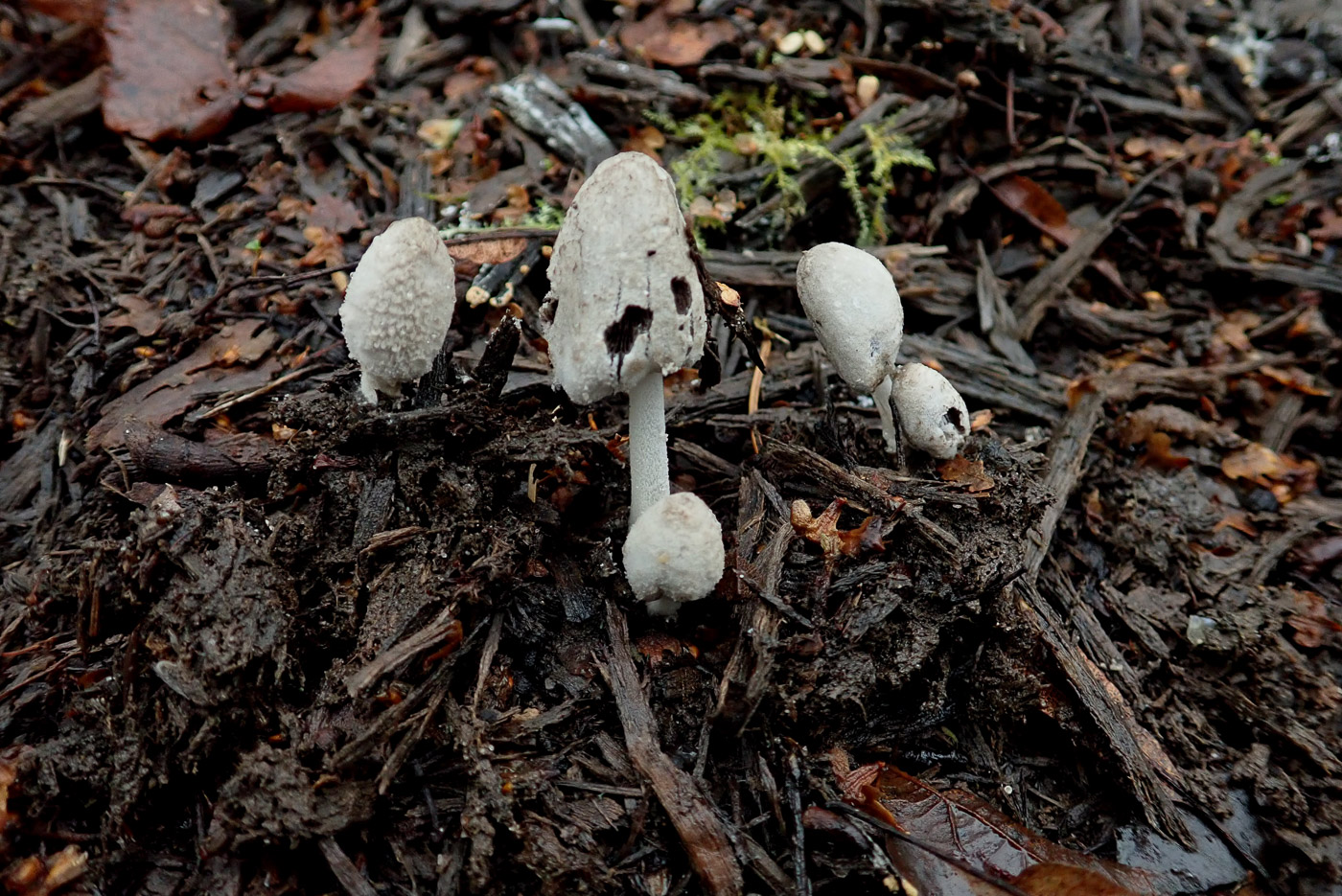 |
November 17th Coprinopsis lagopus (Hare'sfoot Inkcap)
We have photos of well developed fruit bodies of this Inkcap (dated Oct 1st) but not of young specimens which at this stage are the reason for its common name. So when Penny C. spotted these on the same woodchip pile in Turville Heath as our first collection, she thought it would be worth including. Typical when just emerging are these pale grey fluffy oblongs which soon develop a long stem and expand into the mature fruit body. The whole process takes probably no more than a couple of days or so before it gets to the inky mess stage.
|
November 16th 2020
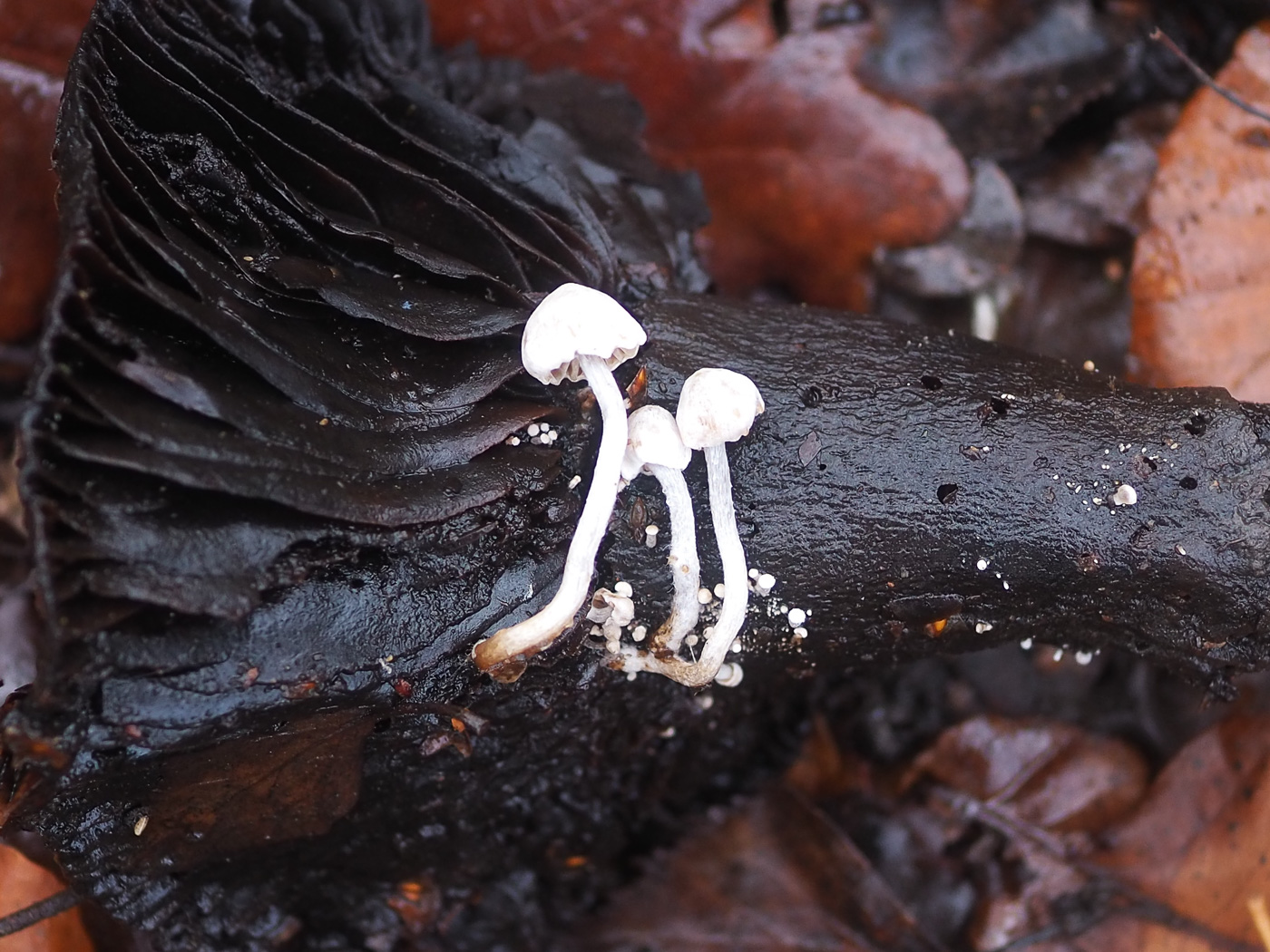 |
November 16th Asterophora parasitica (Silky Piggyback)
We had our first find of this 'fungus growing on a fungus' on Nov 1st and John Catterson, who found today's photogenic collection in Tinkers Wood, was hoping that this would make the second of the two species of this genus which occur on old Brittlegills, thus adding another new name to our list. However, as we are just able to see clearly developed gills in the larger cap, also the cap is lacking the dusting of beige which characterises A. lycoperdoides, we have to assume that this is a repeat of that found on Nov 1st though very nice material because one can clearly still see the form of Russula nigricans on which it is growing. So watch out for two other 'Piggybacks' which could well be about now: A. lycoperdoides (Powdery Piggyback)has a loose dusty beige covering over the cap and poorly developed gills - not that common, also Volvariella surrecta (Piggyback Rosegill) - much rarer and found on rotting fruit bodies of Clitocybe nebularis.
|
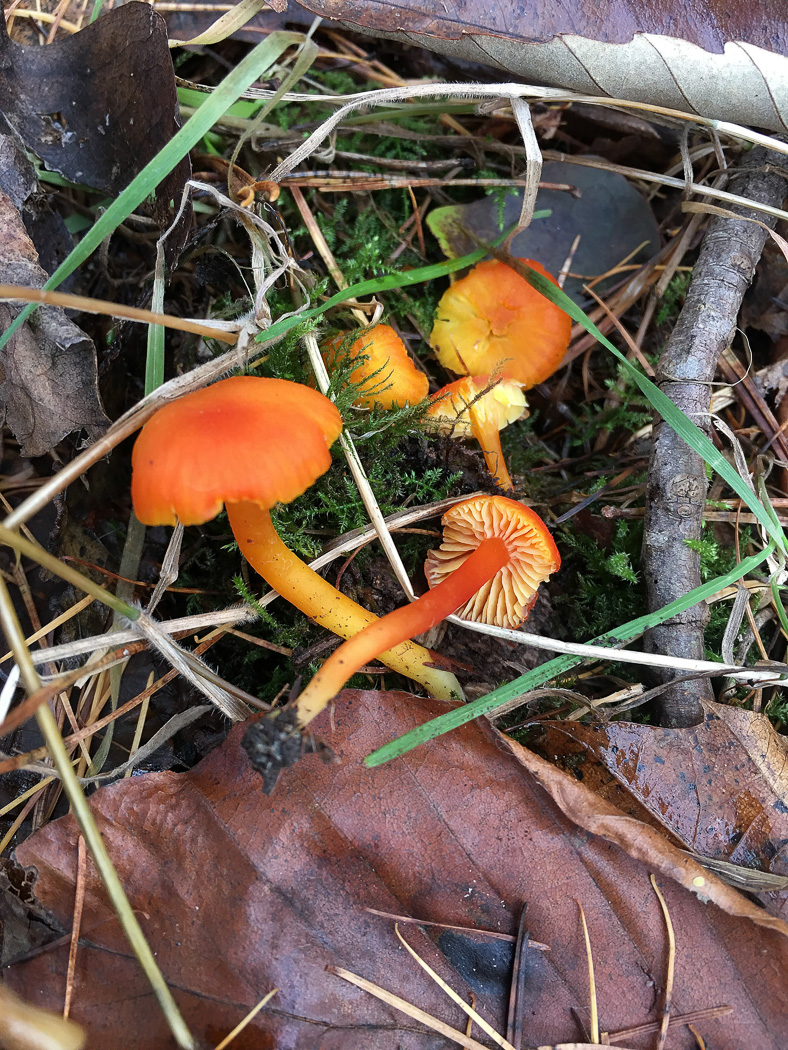 |
November 16th Hygrocybe miniata (Vermillion Waxcap)
We have this species already, dated 30, but Derek's find today in Hockeridge Wood is our first example of a Waxcap fruiting in woodland. Here it was in a fairly open area in mossy grass amongst deciduous litter. Waxcaps tend to be thought of purely as grassland species but this is in fact not the case and they can quite often pop up in wooded areas, as can clubs as well, though they seem to require some degree of light and space amongst the trees cover.
|
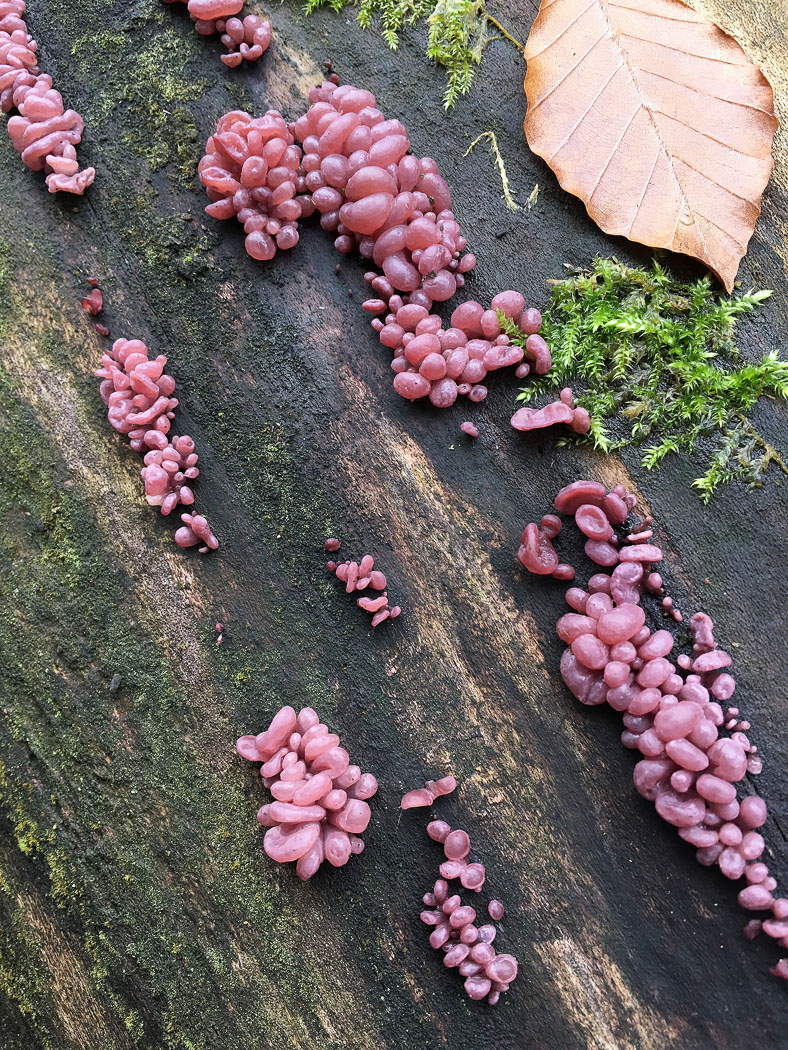 |
November 16th Ascocoryne sarcoides (Purple Jellydisc)
This is another species we already have (See Oct 06 and 18 for more details) but this was a particularly photogenic patch on a bare Beech log in Hockeridge Wood, found by Derek Schafer.
|
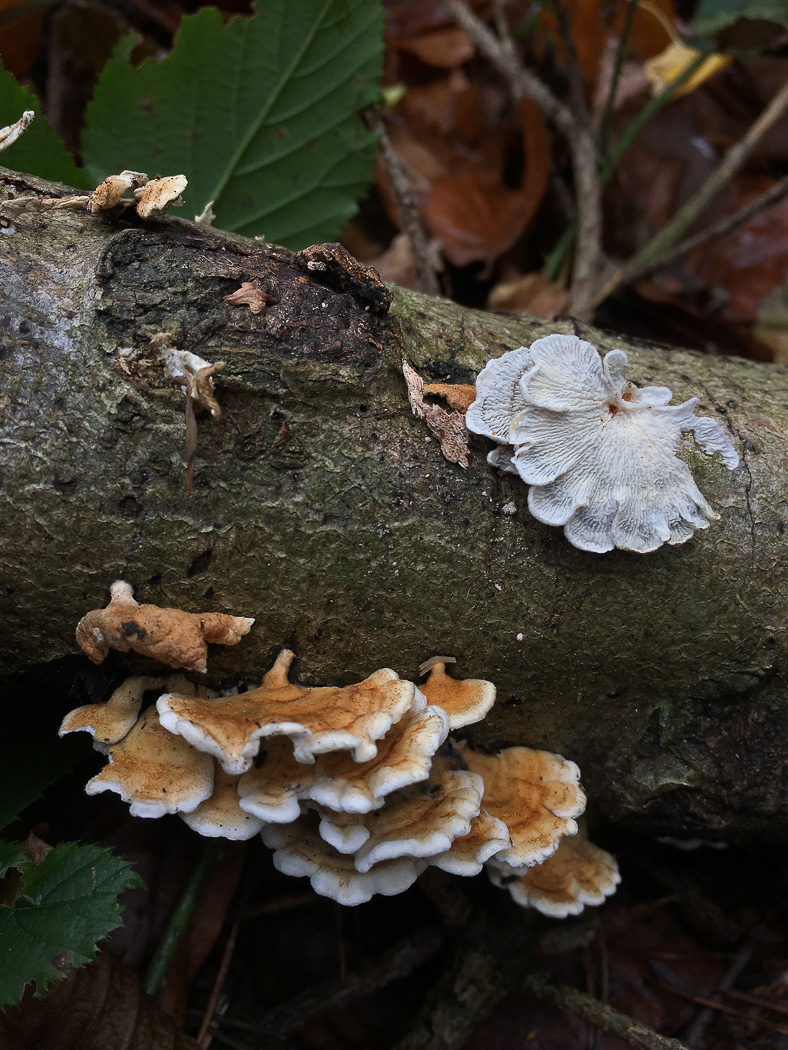 |
November 16th Plicatura crispa (Crimped Gill)
Derek Schafer found this unusual species on a deciduous log in Hockerdge Wood. We do already have an example of this, dated Oct 23 (see notes there for more details about the species) but this is a larger more developed specimen and thus worth including here. It also shows that it's still fruiting away and worth looking out for. (Actually John Catterson also sent in a photo of this the following day.)
|
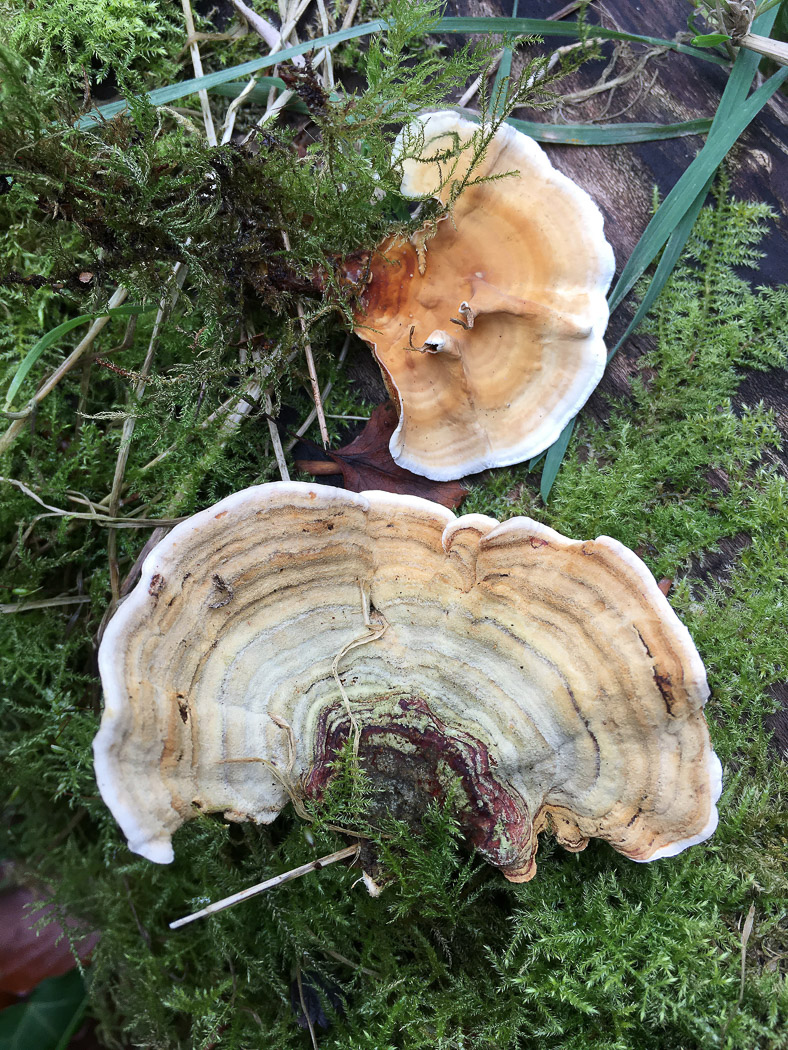
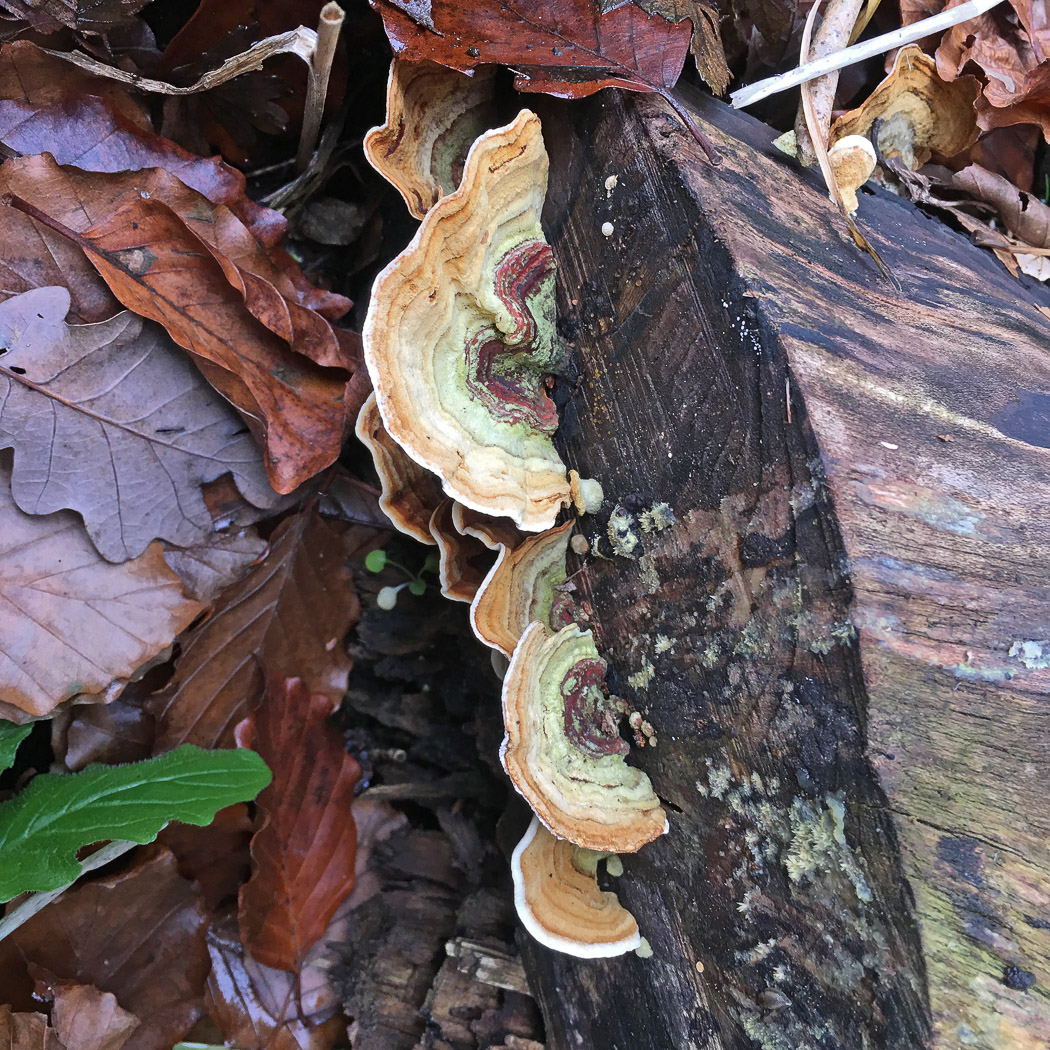
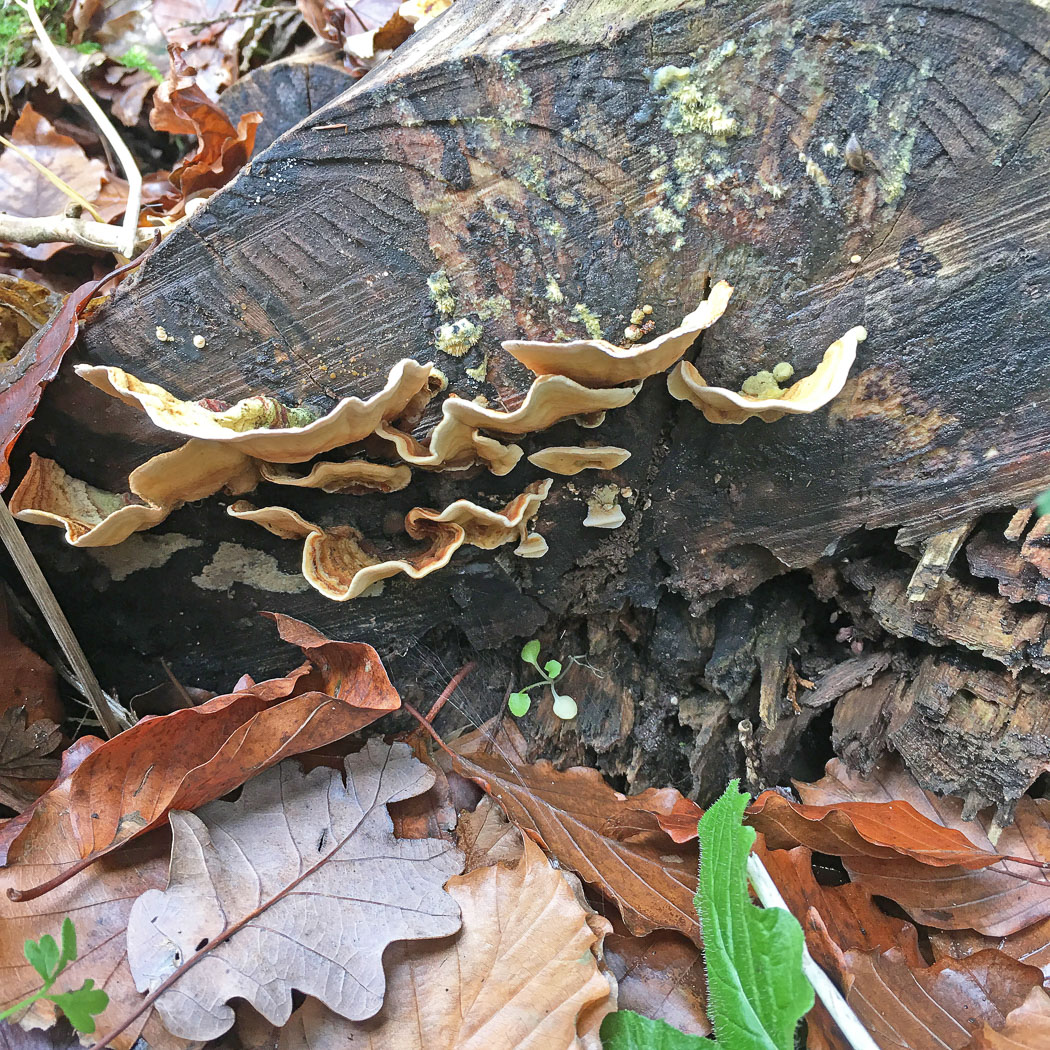 |
November 16th Stereum subtomentosum (Yellowing Curtain Crust)
Derek Schafer found this bracket, new to our list, on a bare deciduous log in Hockeridge Wood. It's a species very similar to the much more common S. hirsutum and also found on fallen deciduous branches. It tends to be thinner fleshed and is much flimsier but the two species can be difficult to separate unless - as the common name suggests - one can persuade the edge of the bracket to stain yellow when damaged - something which doesn't occur in S. hirsutum. Biting the edge often works but from these photos I don't think Derek can have tried this today!
|
November 15th 2020
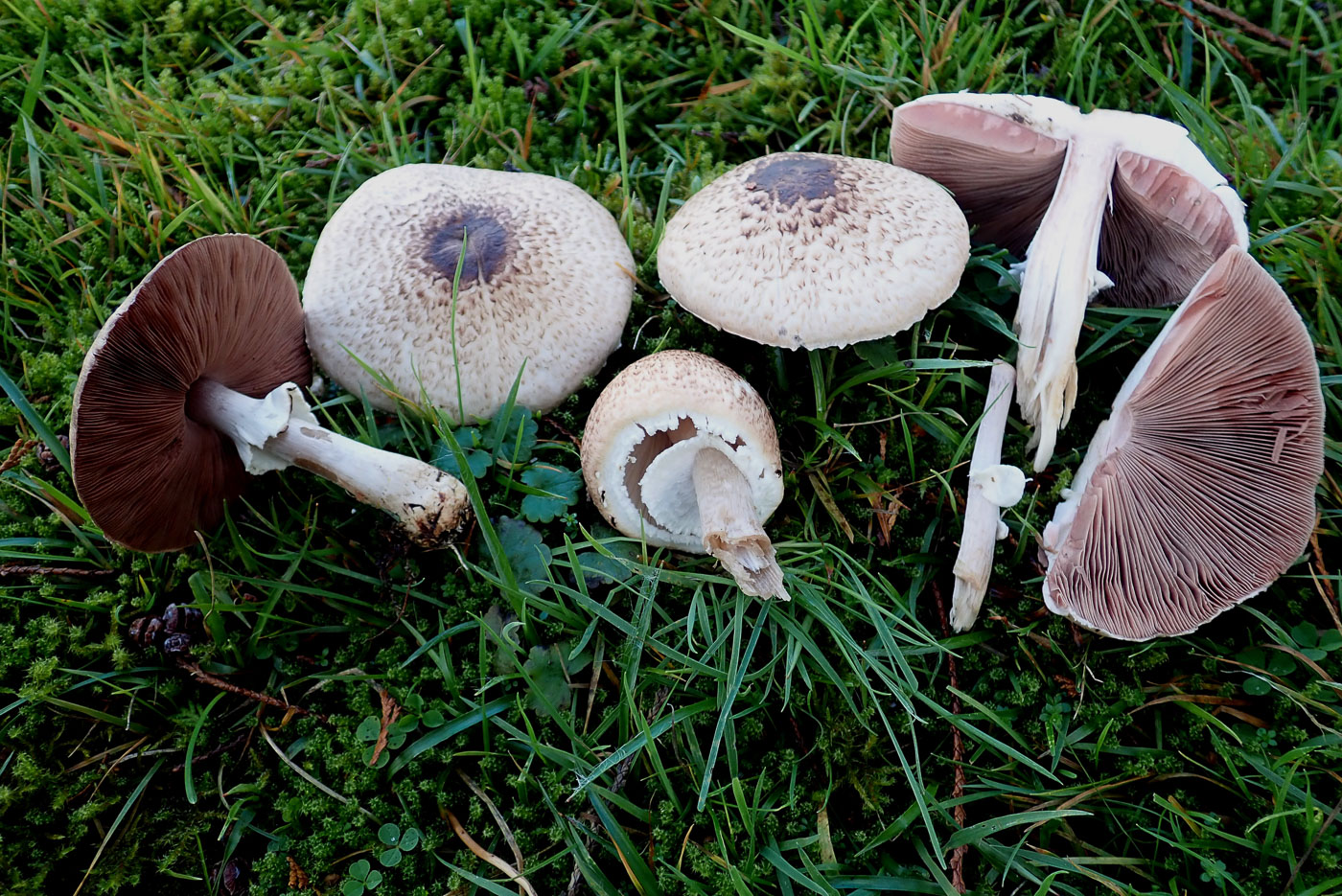
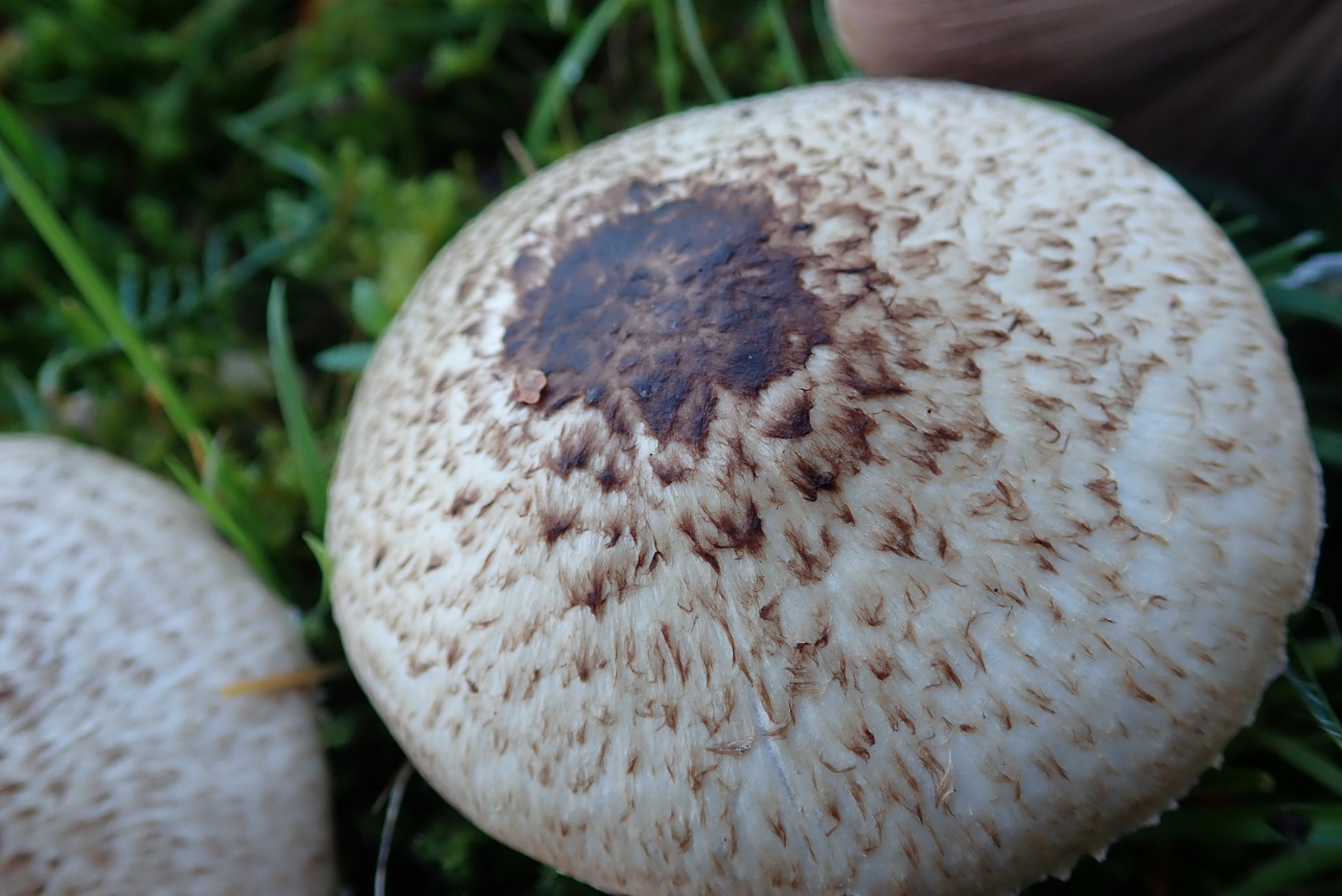
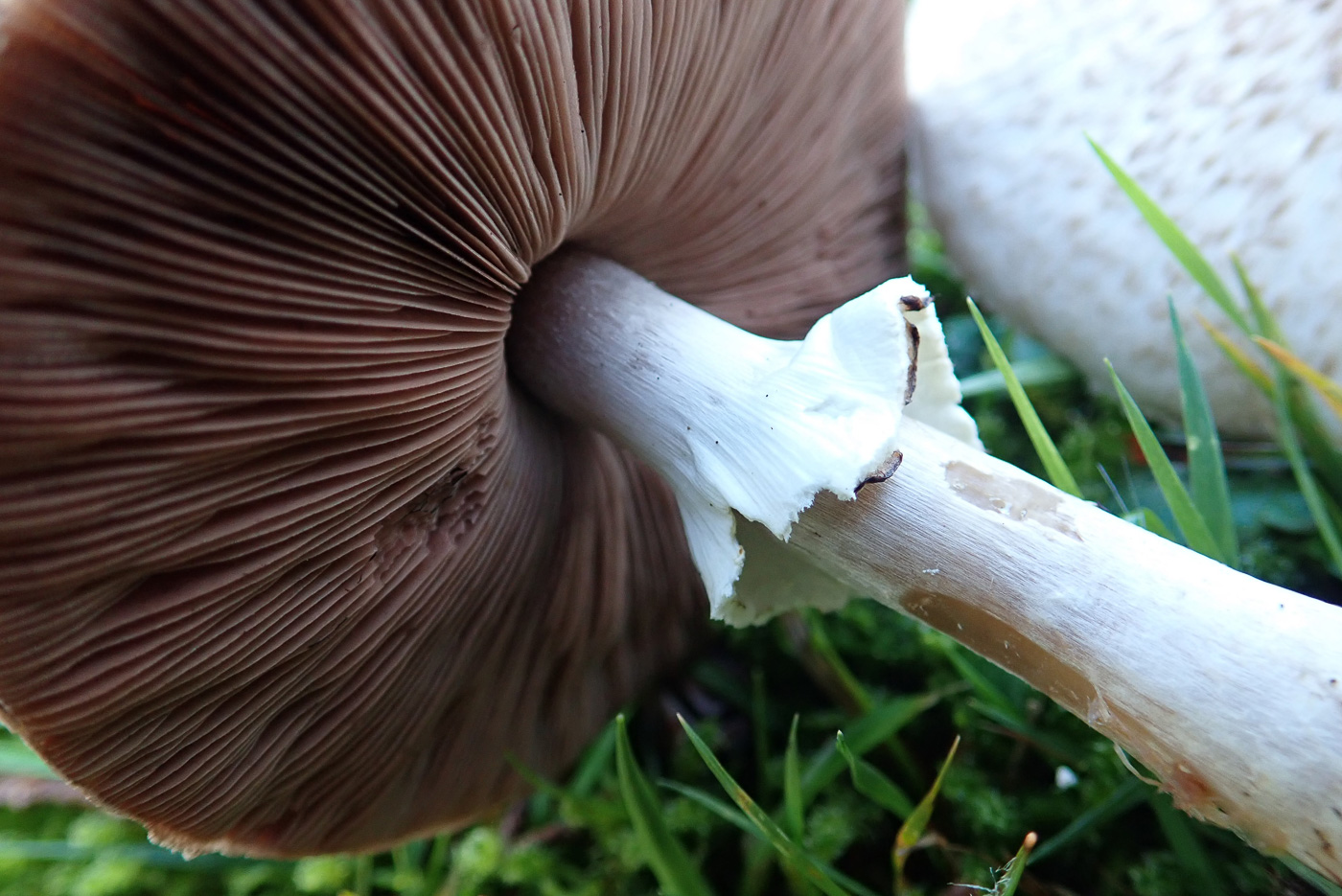 |
November 15th Agaricus impudicus (Tufted Wood Mushroom)(
Penny C. was surprised to find good numbers of this quite common Agaricus coming up this late in the season in grass under Pine in Holmer Green churchyard. It is easy to separate from the somewhat similar A. sylvaticus (Blushing Wood Mushroom) because neither the cap nor the stem redden when scratched - a diagnostic feature of that species, neither does it stain yellow as many species of this genus do. The dark brown central disc is typical as are the cocoa brown fine radiating scales, the gills are persistently quite bright pink as and it has a skirtlike ring on the stem. Rather than the pleasant 'mushroomy' smell of many in this genus, it has an unpleasant smell similar to Scleroderma or Lepiota cristata.
|
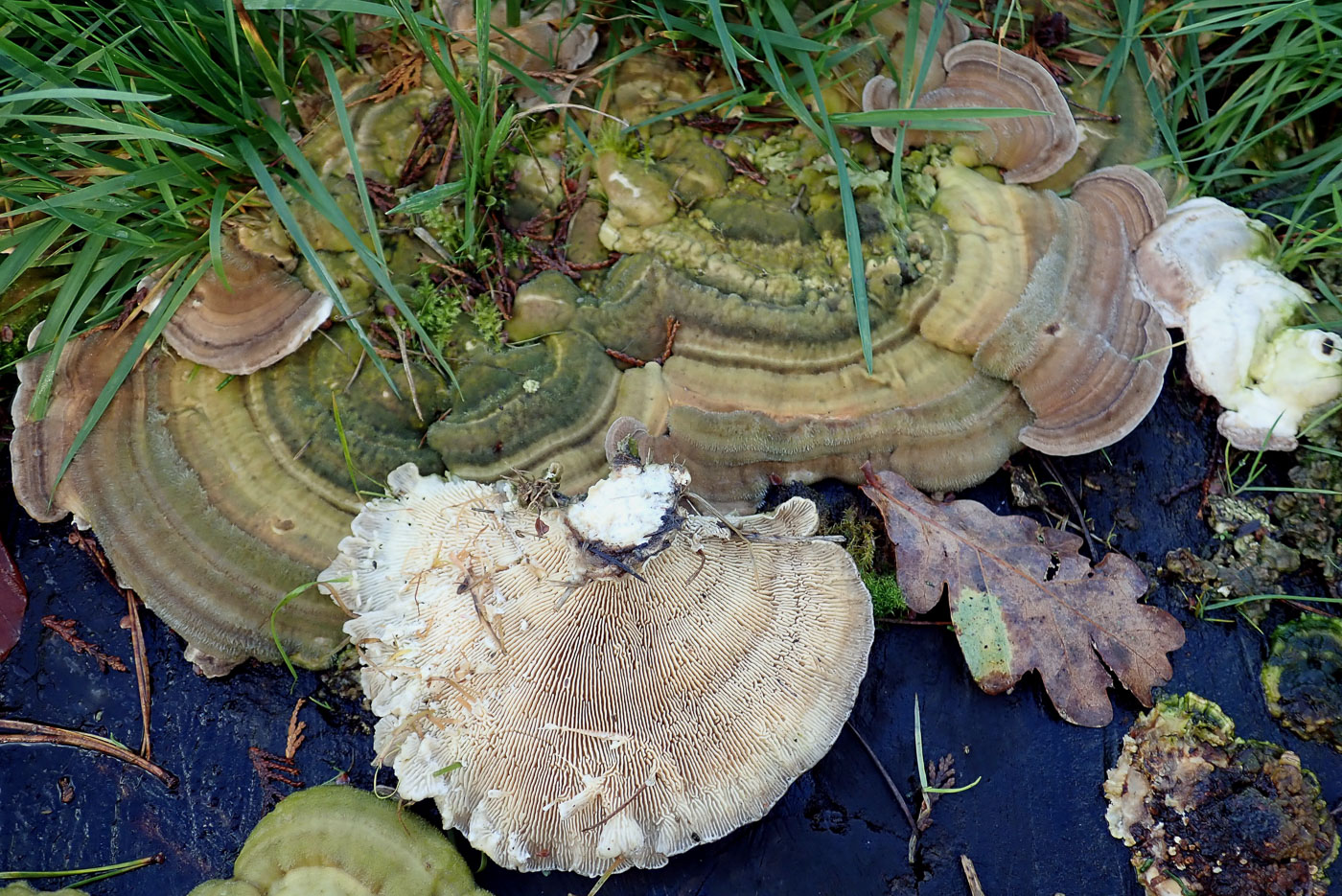
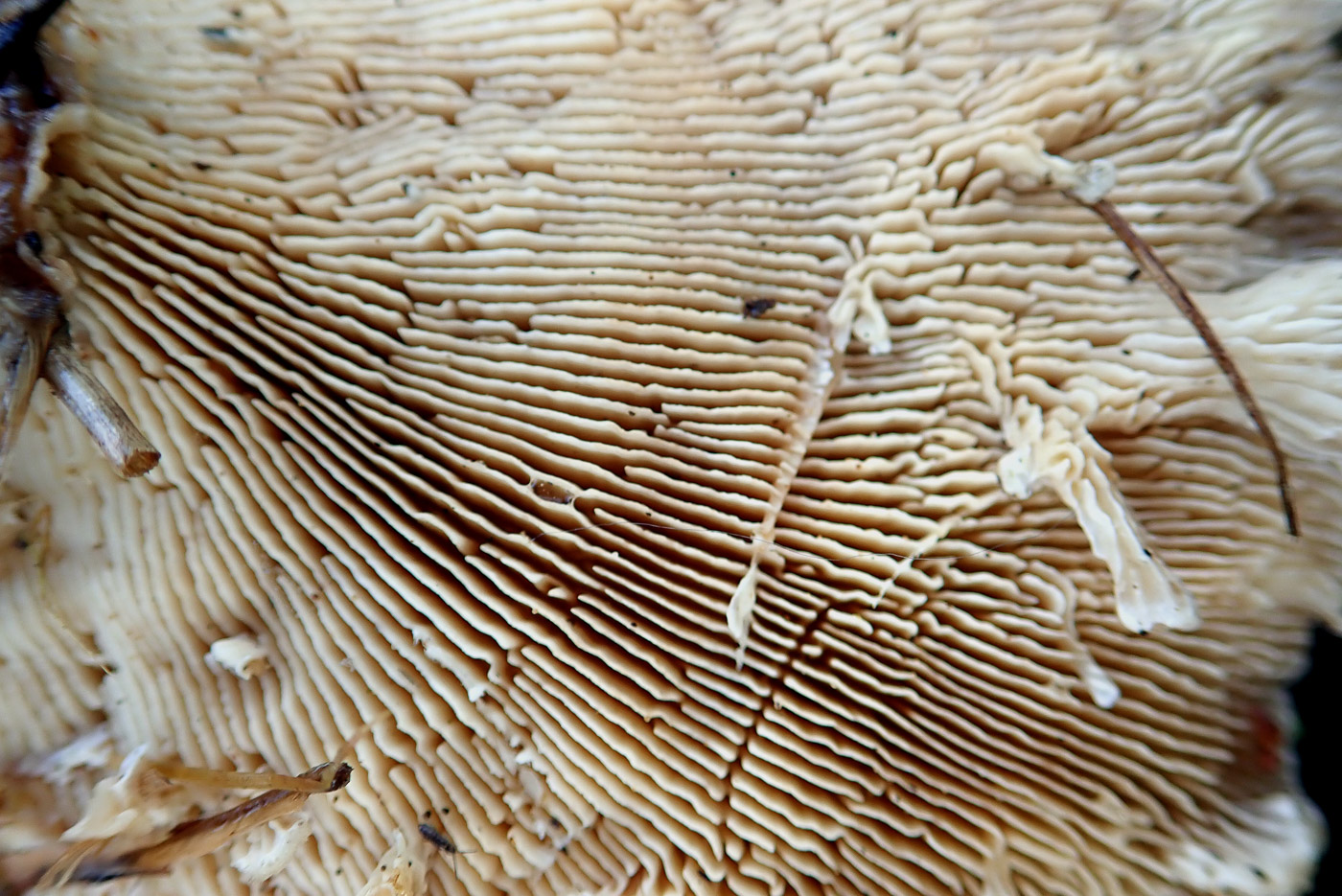 |
November 15th Lenzites betulinus (Birch Mazegill)
We have this species already (dated Oct 22nd) but when Penny saw this particularly fine collection of brackets on a sawn off stump in Holmer Green churchyard she though it was well worth including again. Not that common, its upper surface resembles the much more common Trametes gibbosa (Lumpy bracket) particularly when covered in green algi as here and a common occurrence on the Trametes as well. The underside, however, is very different: tough but clearly almost gill-like rather than porous. It can occur on other dead deciduous woods as well as Birch.
|
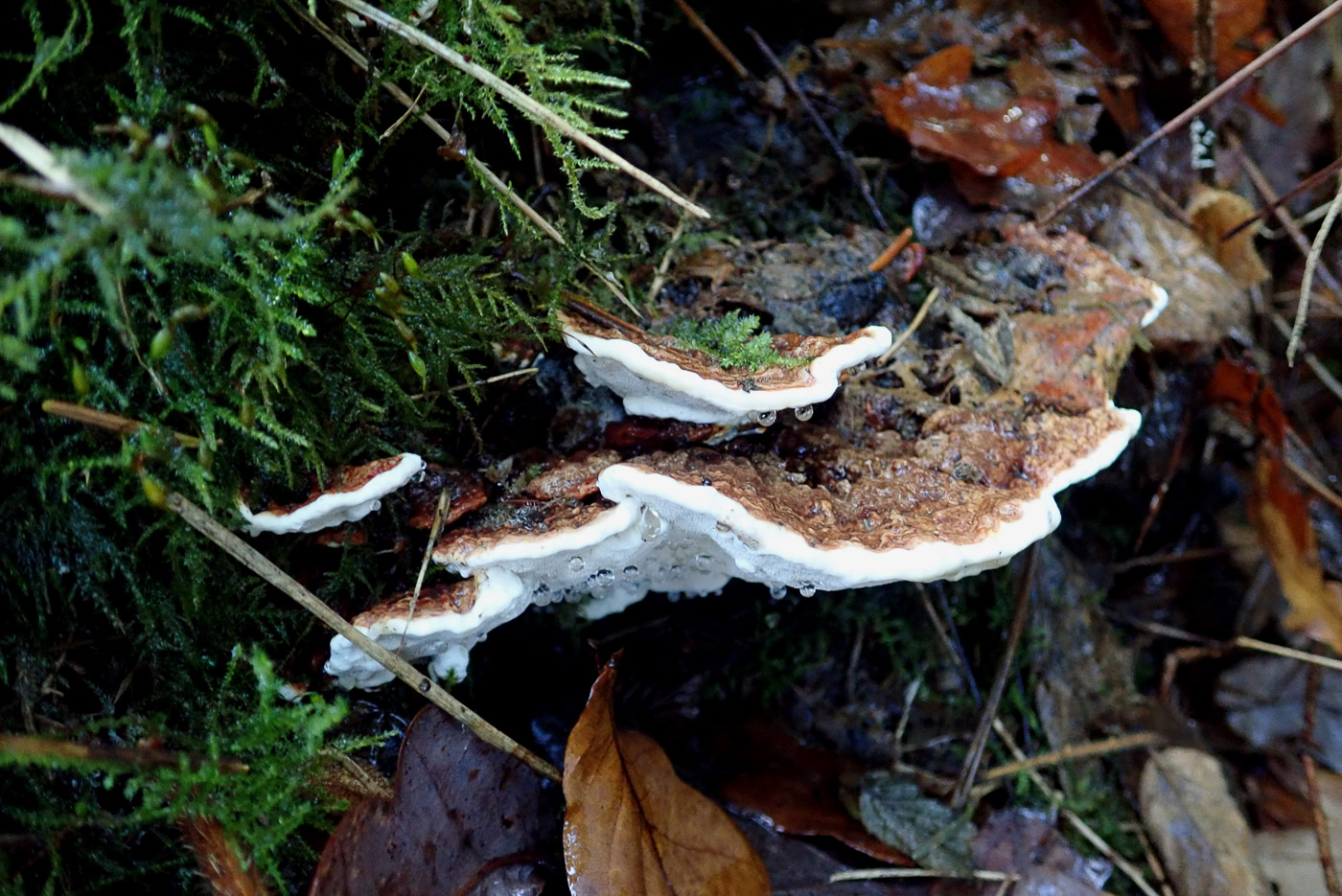
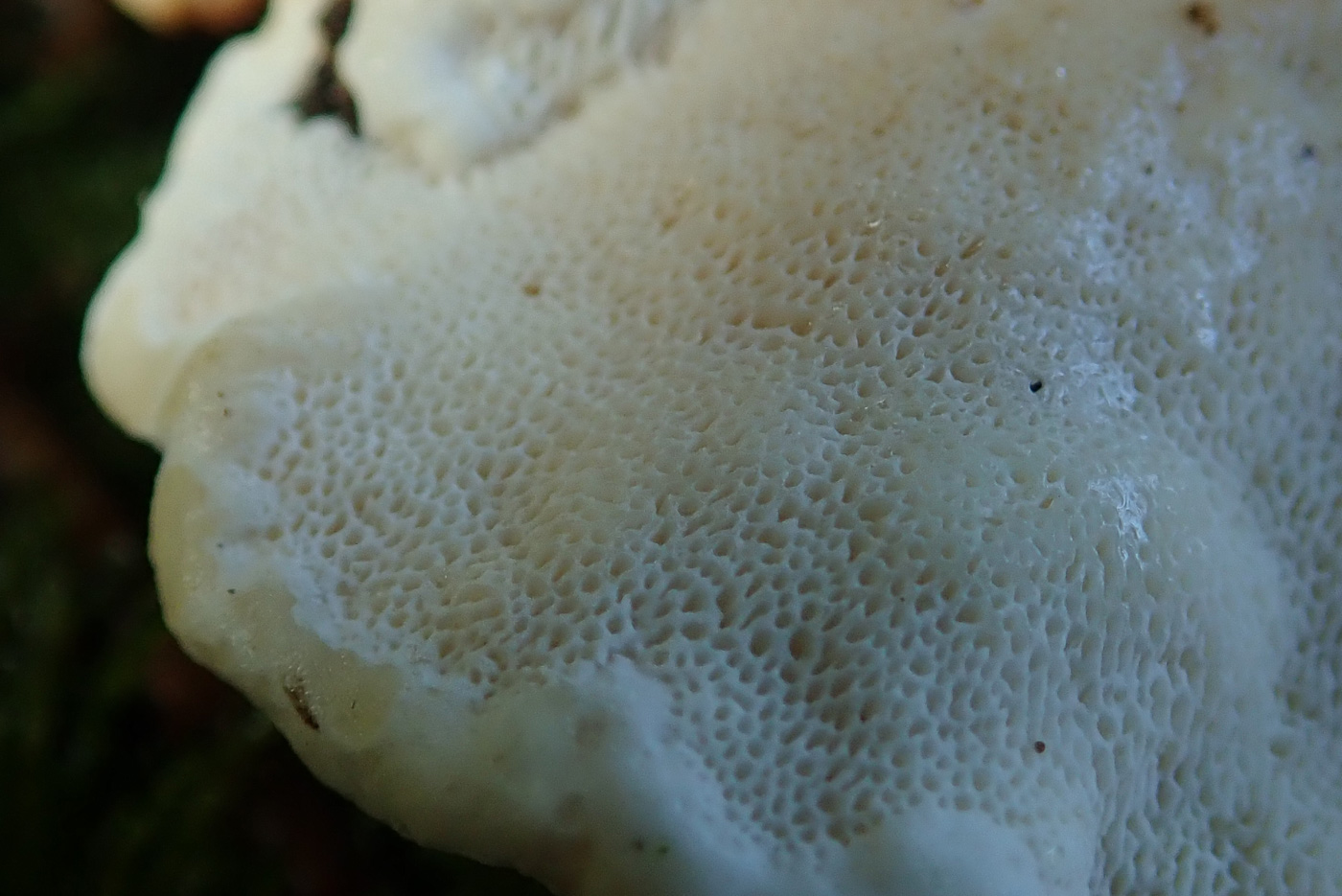 |
November 15th Heterobasidion annosum (Root Rot)
Penny C. noticed this quite common bracket on an unidentified stump in Penn Wood. It forms thick chunky semicircles which are hard and lumpy and has quite fine rounded cream pores underneath. Commonly on conifer but also found on deciduous trees, it is considered a dangerous parasite attacking living trees. It has a strong resinous fungoid smell.
|
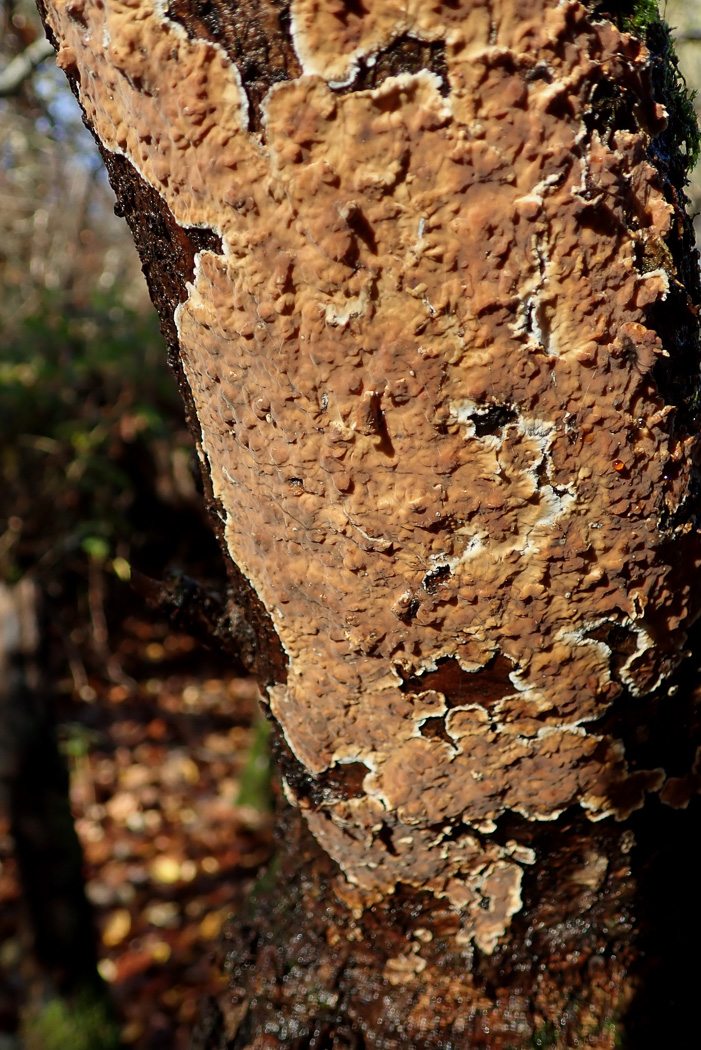
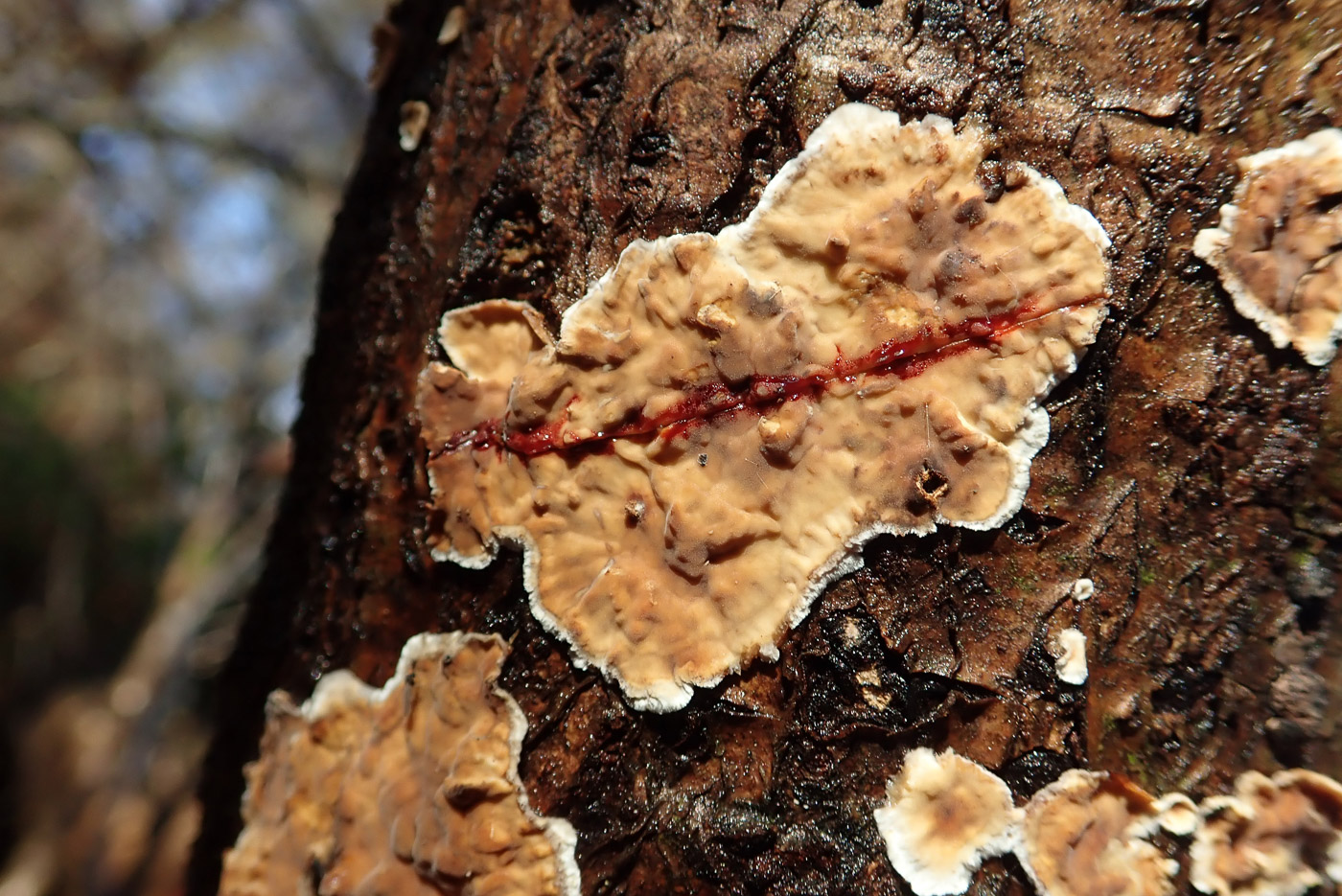 |
November 15th Stereum rugosum (Bleeding Broadleaf Crust)
Penny C. found this large pinkish patch on a standing dead Birch trunk in Penn Wood. Unlike the very common S. hirstum (see photos dated Sept 25) this particular Stereum does not form brackets but remains resupinate (flat to the surface of the wood) and the colour and texture is typically as seen here. It is common on many different deciduous woods and in dry conditions can be much paler than this and also somewhat reluctant to 'bleed' when damaged. S. gausapatum (see photos dated Oct 11) is similar but more uneven and bumpy and is only found on Oak. Today's find was fresh and damp and when cut by Penny it bled most enthusiastically!
|
November 13th 2020
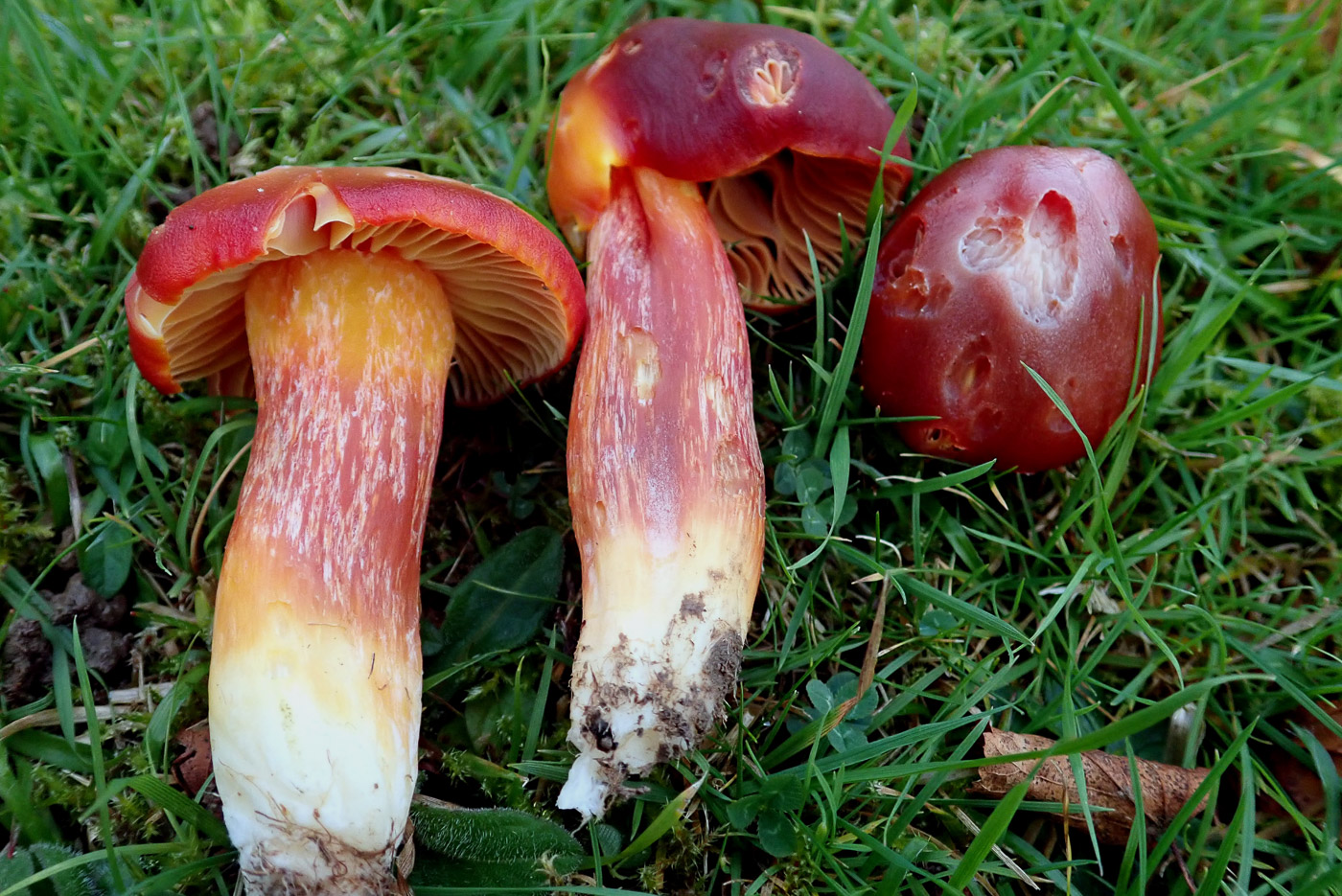 |
November 13th Hygrocybe punicea (Crimson Waxcap) 
Penny C. was delighted to find three specimens of this rare and beautiful species in Prestwood churchyard. This is the largest Waxcap, apparently sometimes getting to 15 cm high with the cap equally wide! The tallest today was a modest 10 cm tall with the cap just 6 cm across but clearly far from fully grown and expanded. The intensely deep red cap is sticky, the gills are widely spaced and the stem is thick, dry, coarsely fibrous and some combination of red, orange or yellow. We have a few records from Penn Street cricket pitch but not since 2013, one from Stoke Poges Memorial Gardens, also regular records from Stowe Landscape Gardens, but I found (but had forgotten all about) one of my records from today's site back in 2005.
|
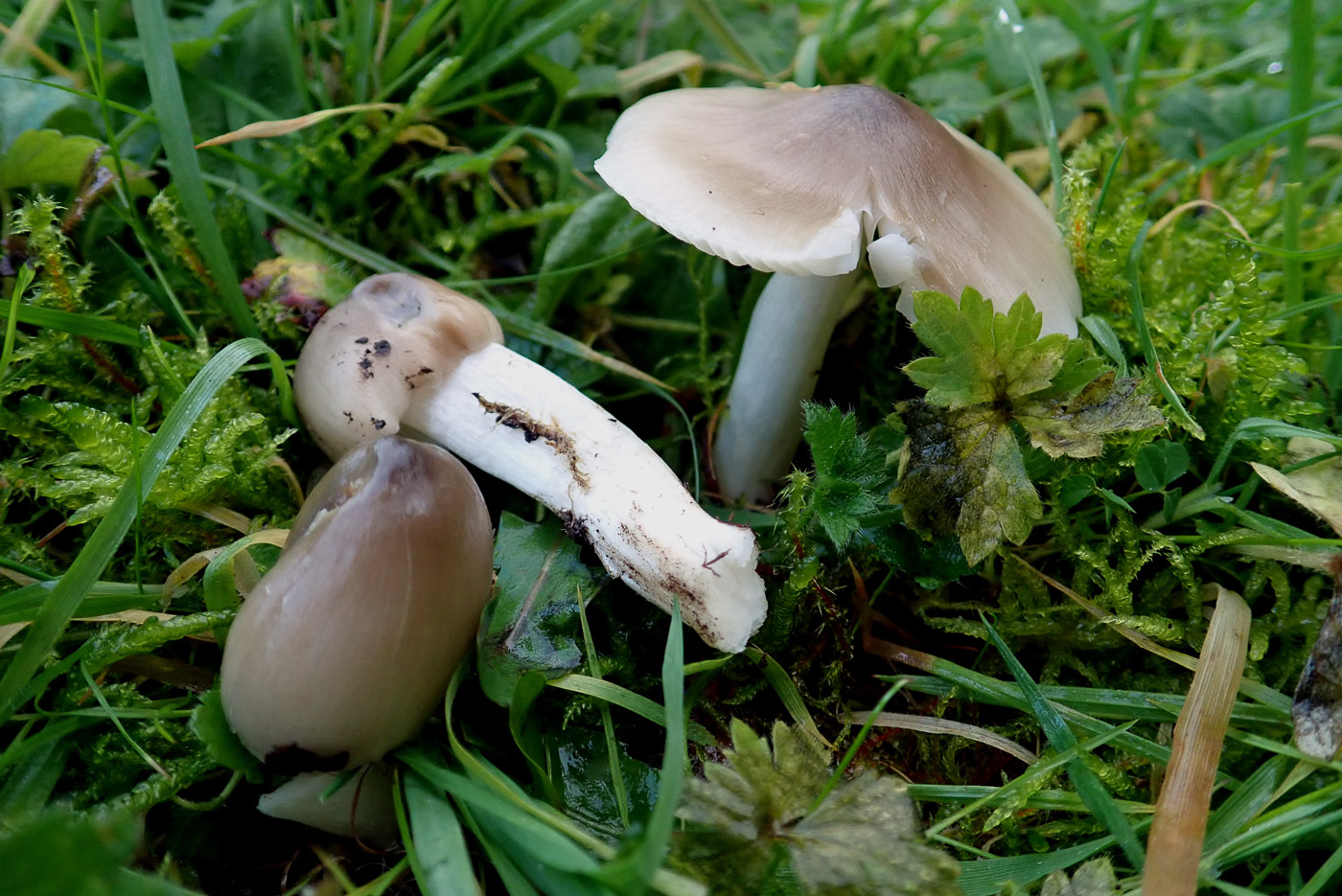
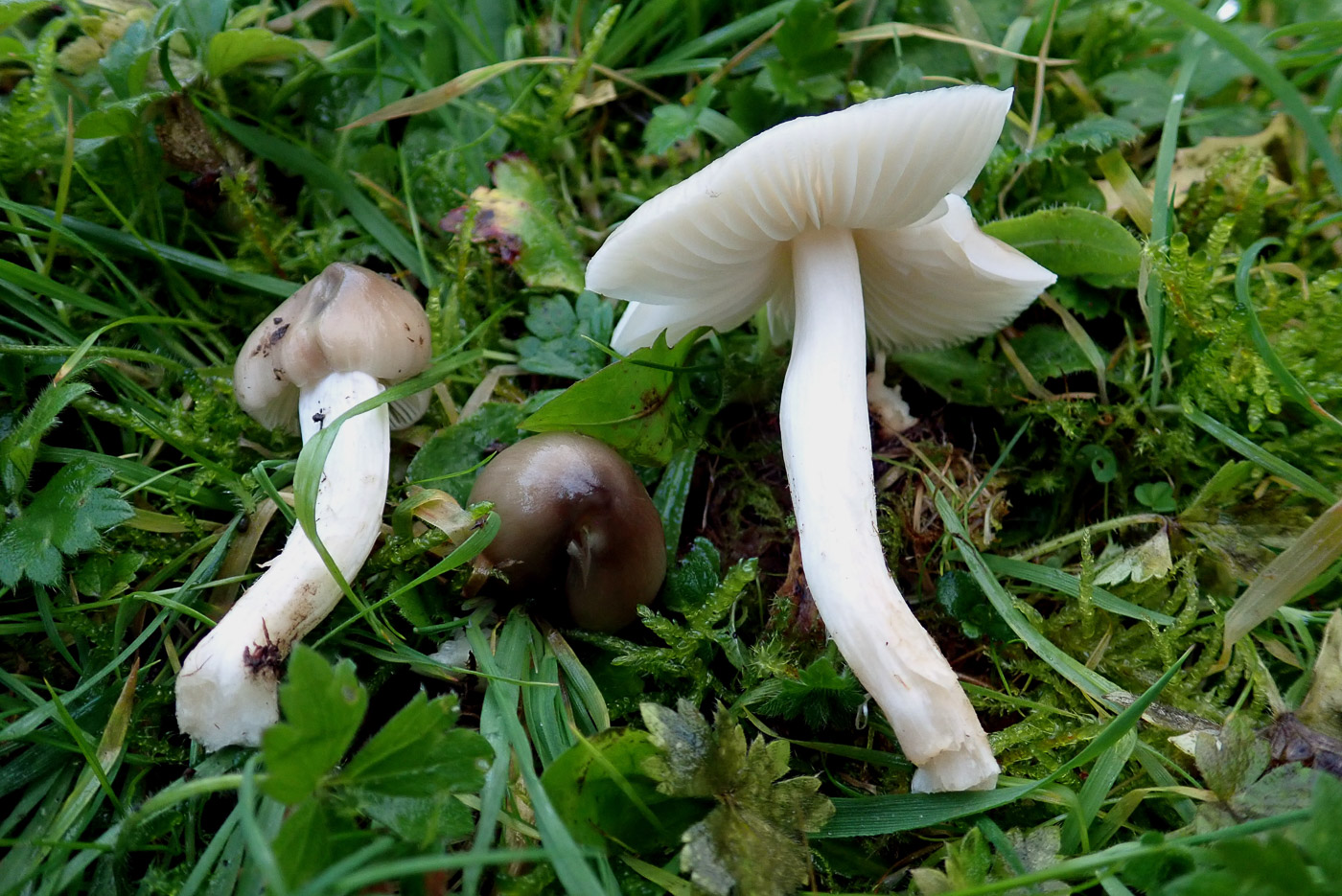 |
November 13th Hygrocybe fornicata (= Cuphophyllus fornicatus - Earthy Waxcap) 
In Prestwood churchyard Penny saw several different species of Waxcaps, two of which were of note and new to our list. H. fornicata - now moved to a different genus - is not a typical Waxcap, having a distinctly conical dry shiny grey cap, sometimes splitting as can be seen in the larger specimen, darker and slightly umbonate in the centre. The gills are crowded and white, the stem is also dry and white and as it dries the fruit body has an unpleasant smell similar to that of the white capped Tricholoma species. We have just four other county sites for this species, but the last record was back in 2005.
|
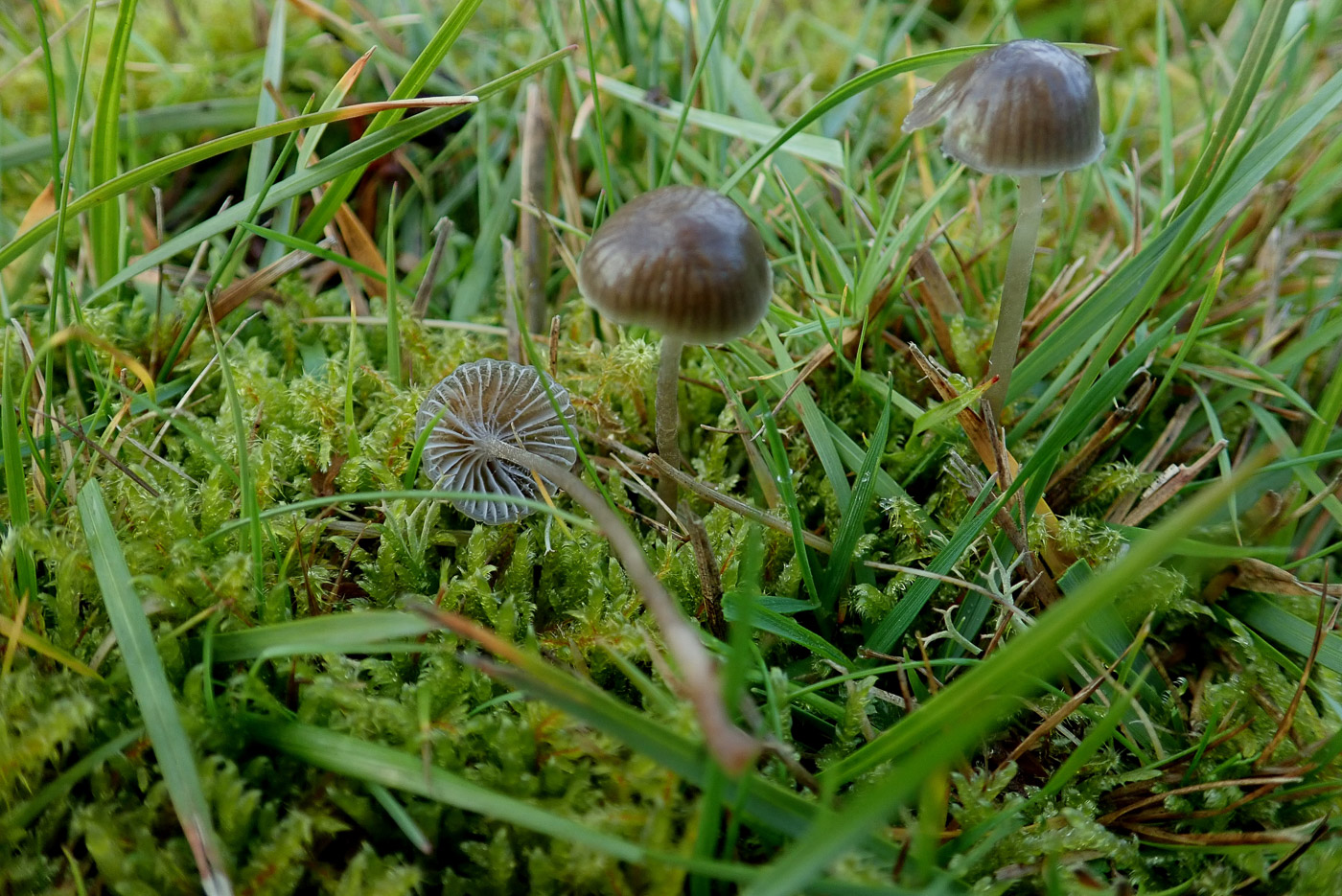 |
November 13th Mycena vulgaris (a Bonnet with no common name) 
Penny C. didn't recognise this Bonnet growing in mossy grass under Pine in Prestwood churchyard and took the photo on the offchance that it might be interesting. At home it took a while to identify but was worth the effort: rarely recorded in the south of the country and not recorded in Bucks since the 1980s, this was a species new to Penny and one which grows in conifer litter. Yet another fairly nondescript brown capped smallish Mycena but with not only a sticky cap coating which peels off like that of M. epipterygia (see a demonstraton of this dated Nov 01) but also a gelatinous gill edge which peels off and a sticky stem as well - a unique combination of features.
|
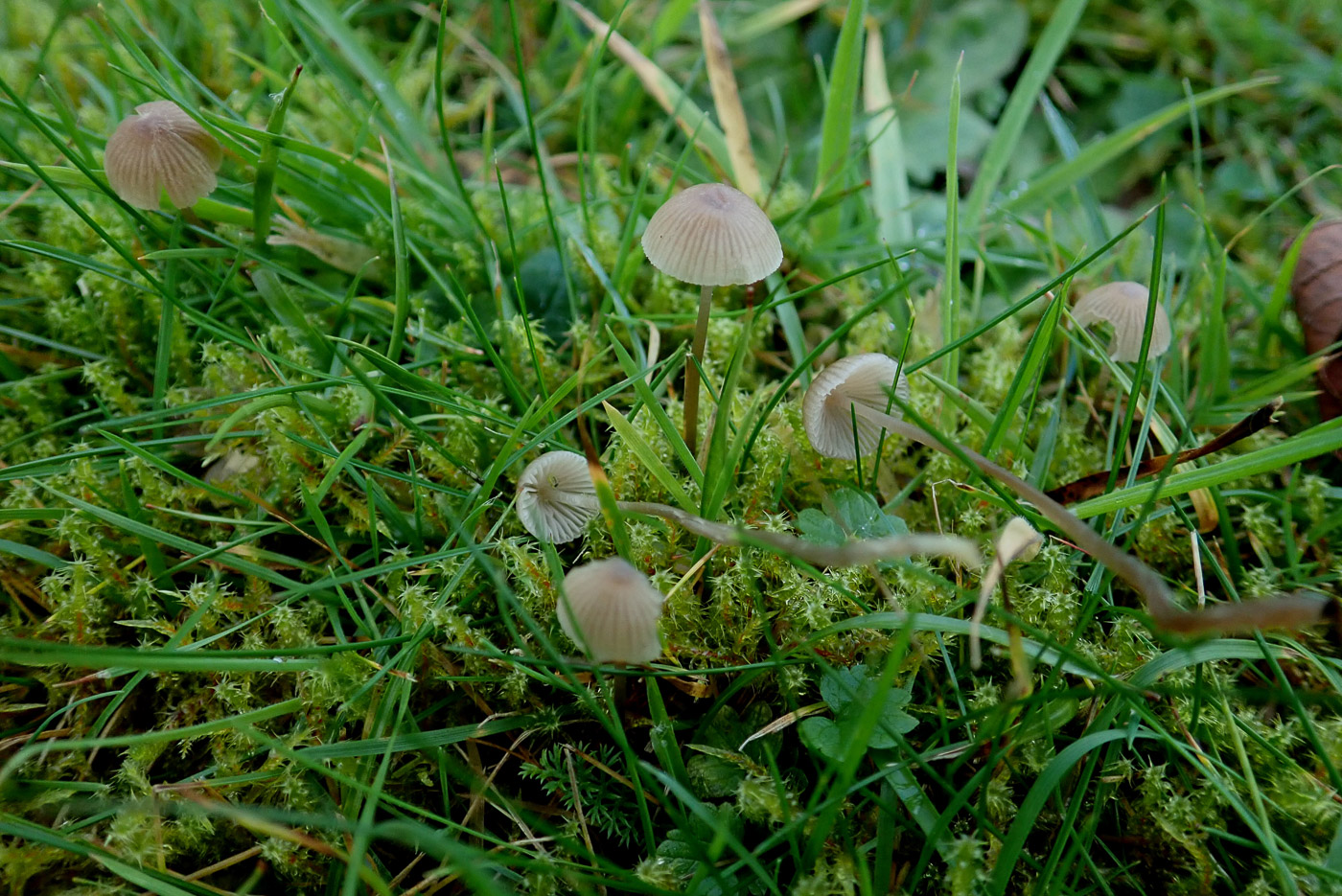
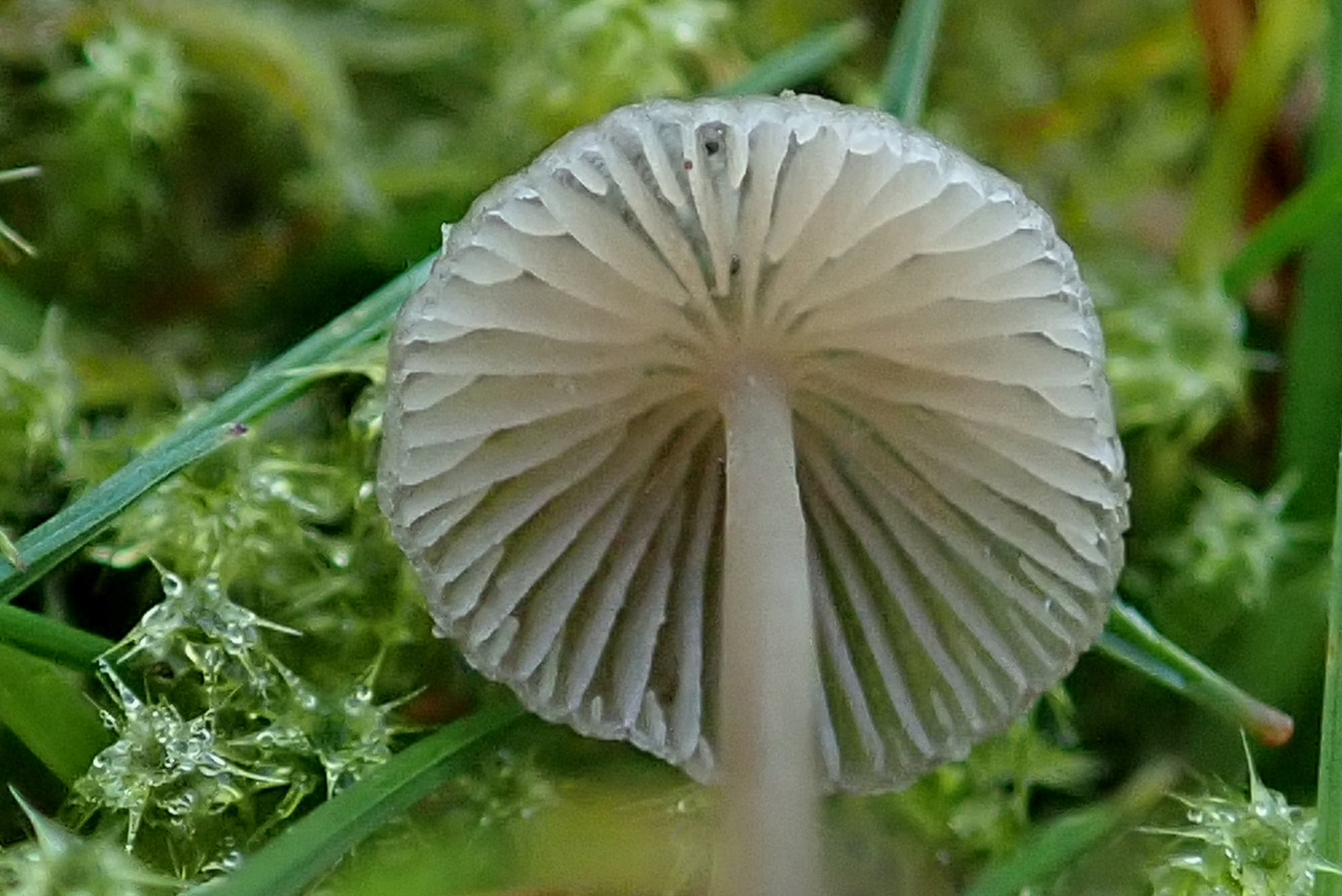 |
November 13th Mycena filopes (Iodine Bonnet) 
Penny C. paid a visit to Prestwood churchyard in search of grassland fungi and was richly rewarded today. This species was the first of two different Bonnets and very common in both woodland and grassland settings. It has a typical small conical pale brown cap which is translucently striate when moist, white crowded gills and a pale thin stem. If you put it in a pot it develops a smell of iodoform as it begins to dry out, but as there are so many other Bonnets which fit this description the only safe way to identify it is with a scope.
|
November 12th 2020
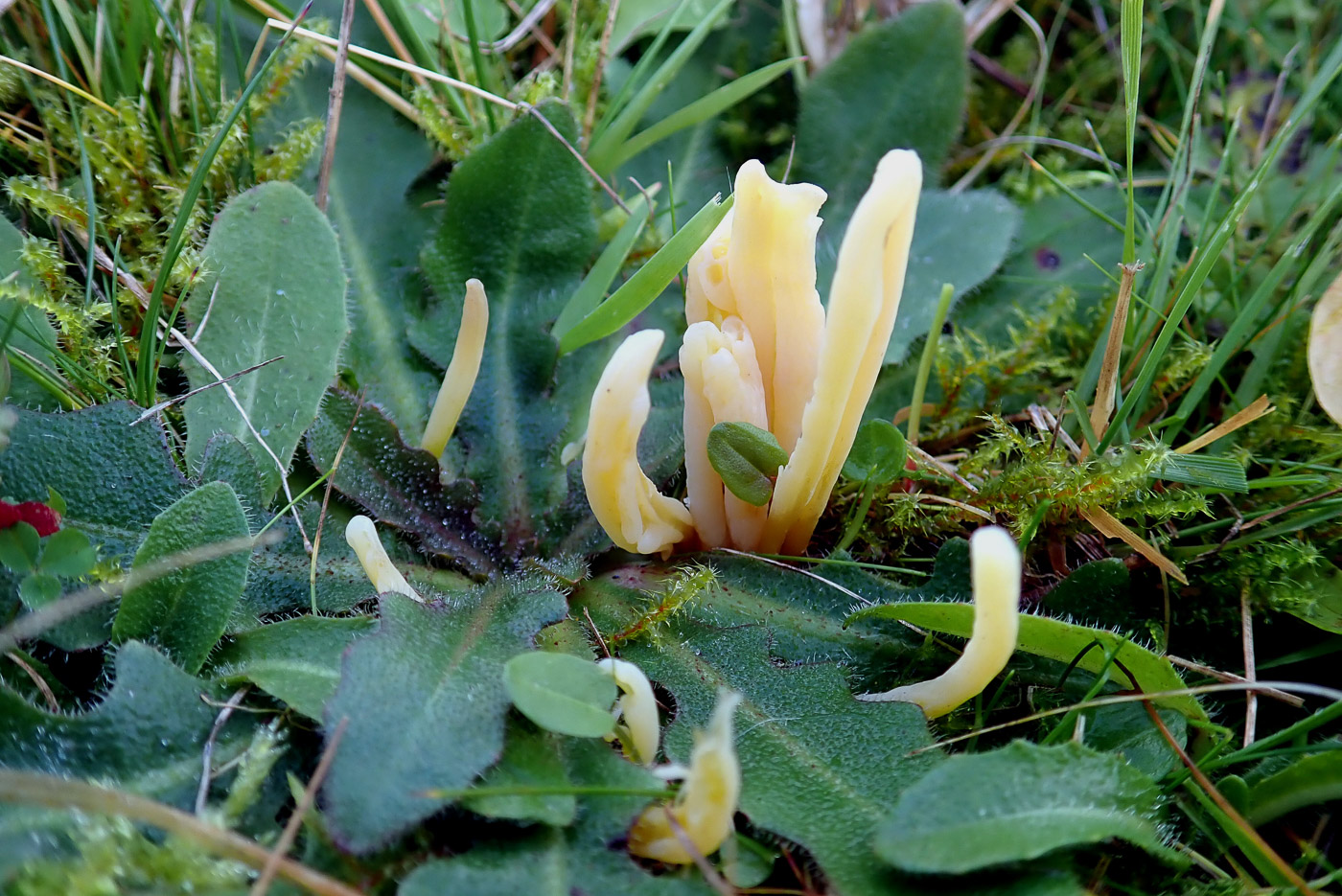 |
November 12th Clavaria fumosa (Smokey Spindles) 
When Penny C. noticed this pale little cluster of clubs on Ibstone Common she nearly passed it by as one of the yellow clubs but just faded and rainwashed. However, she took a photo and collected it just to make sure, only to discover with the scope at home that it was in fact faded and rainwashed (also much rarer) Clavaria fumosa instead! See the collection dated Oct 07 which shows its typical smoky pink colour when fresh, but the notes for that collection comment on its variability, thus today's collection is worth including here to illustrate that.
|
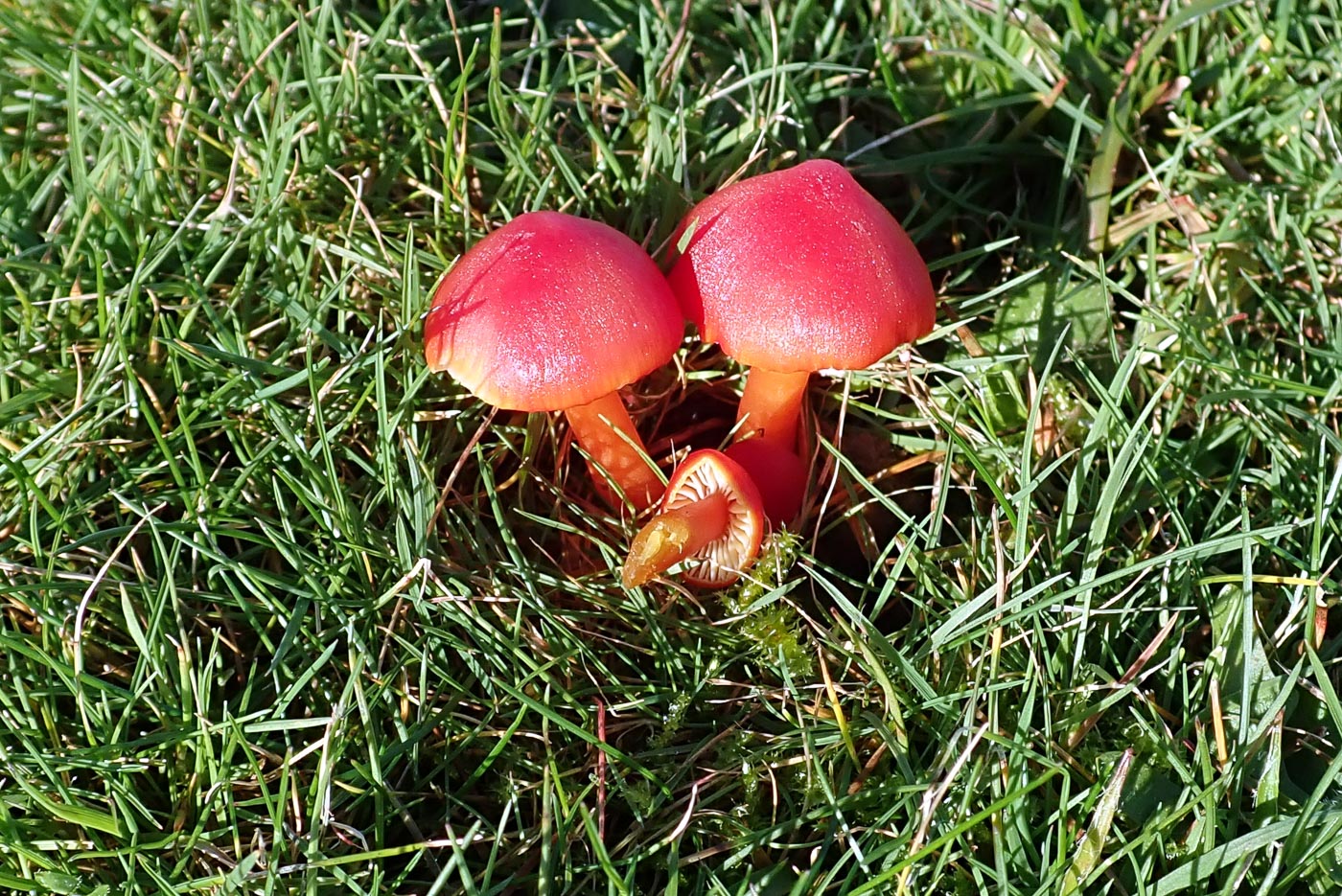 |
November 12th Hygrocybe coccinea (Scarlet Waxcap)
On the Ibstone cricket pitch Penny C. found a good smattering of Waxcaps still fruiting, six different species (all of which we have already on the list) including these nice fresh specimens which it's always good to see. So if you like grassland species it's still worth having a look in churchyards, cricket pitches etc. We are still missing the grey H. irrigata (Slimy Waxcap) and dirty orange H. laeta (Heath Waxcap), both quite common species and well worth looking out for.
|
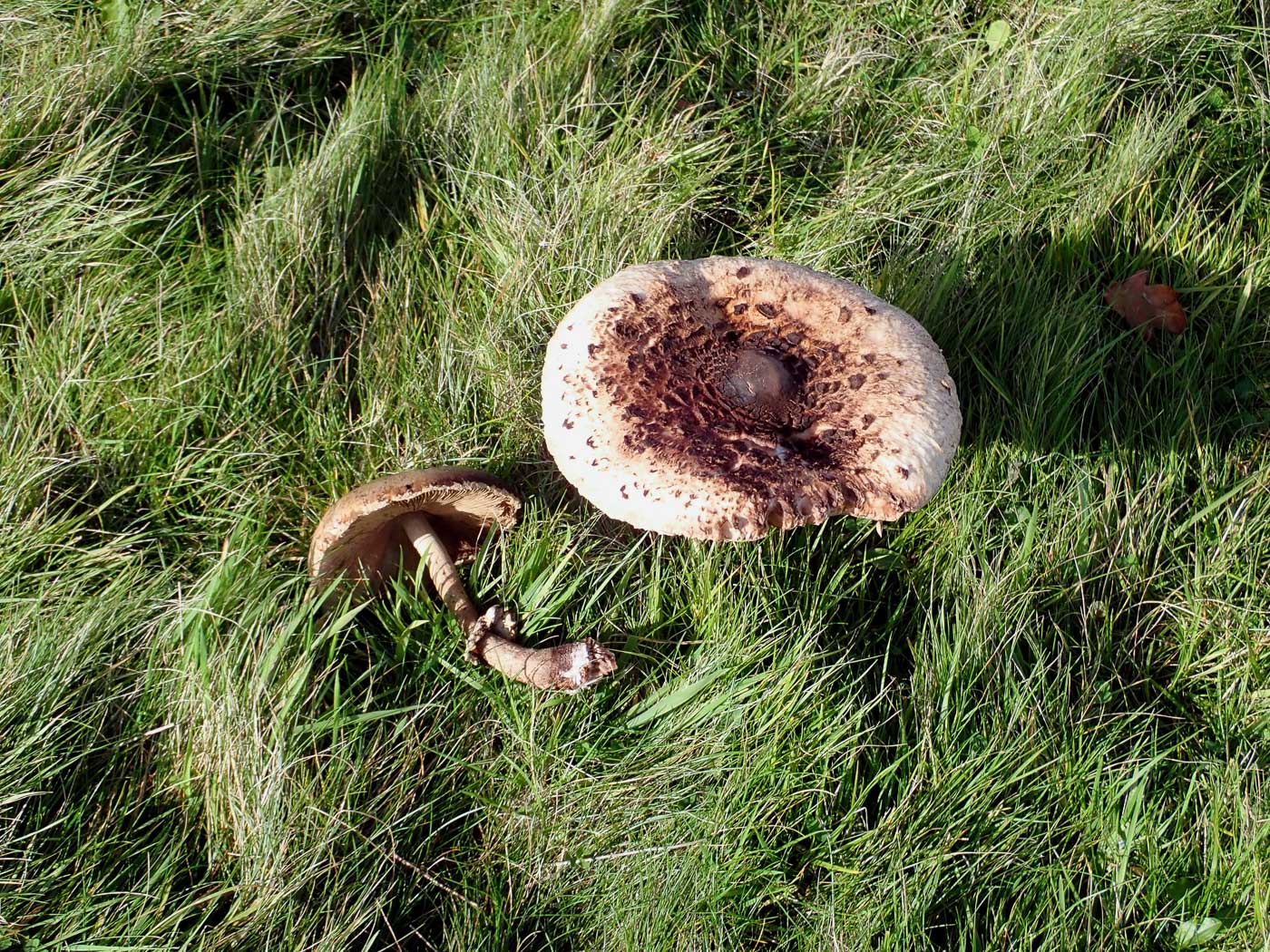
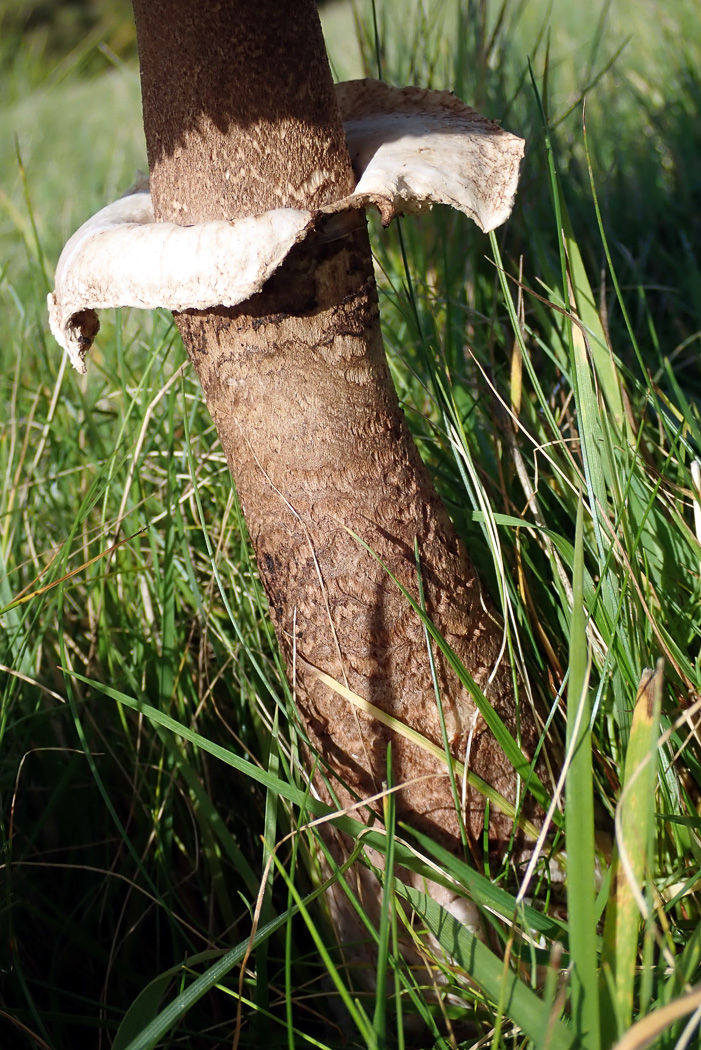 |
November 12th Macrolepiota procera (Parasol)
In long grass on Ibstone Common Penny C. nearly missed this huge specimen (especially as she had her eye in looking for tiny grassland species!). It is well weathered, however, but worth including as we only seem to have young examples so far (dated Sept 05!) and the cap here was wider than Penny's hand so over 20 cm across. The dark cap scales on a pale ground, the substantial stem ring and snakeskin stem markings are all still in place to identify this common and impressive species which has continued fruiting on and off for well over 2 months.
|
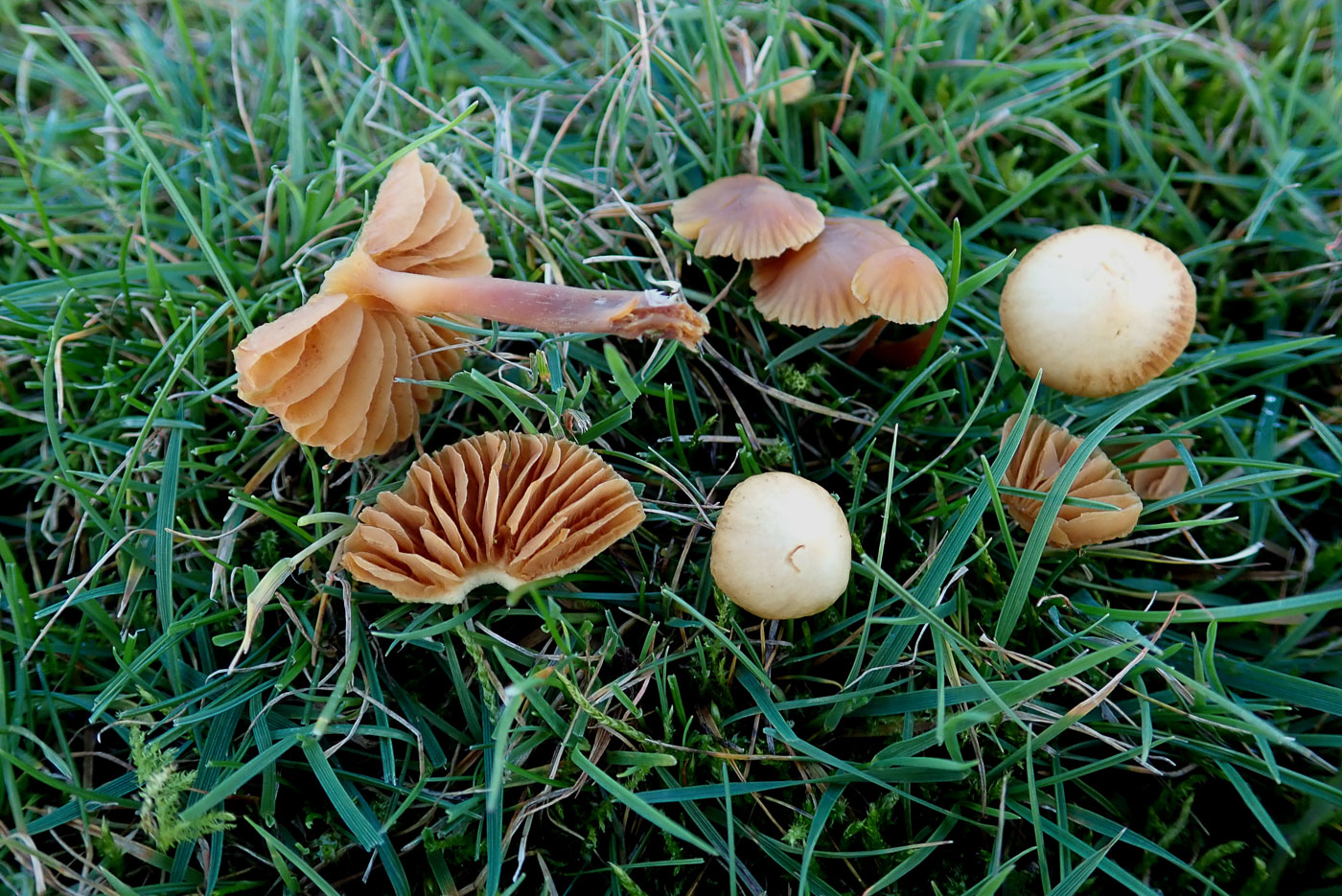 |
November 12th Galerina vittiformis (Hairy Leg Bell) 
Now the main fruiting season is clearly winding down, there's time to look at more LBJ types which still seem to be around. On the cricket pitch at Ibstone Common Penny C. found plenty of these pale rusty LBJs, some typically very faded despite the recent rain. This genus always needs to be identified with a scope because there are very many different species, most of which look exactly like today's collection! Not all are grassland species, however, and some are found in woodland either on soil or on fallen wood according to species. Today's species is one of the commonest on lawns and shortish grass and keyed out quite easily.
|
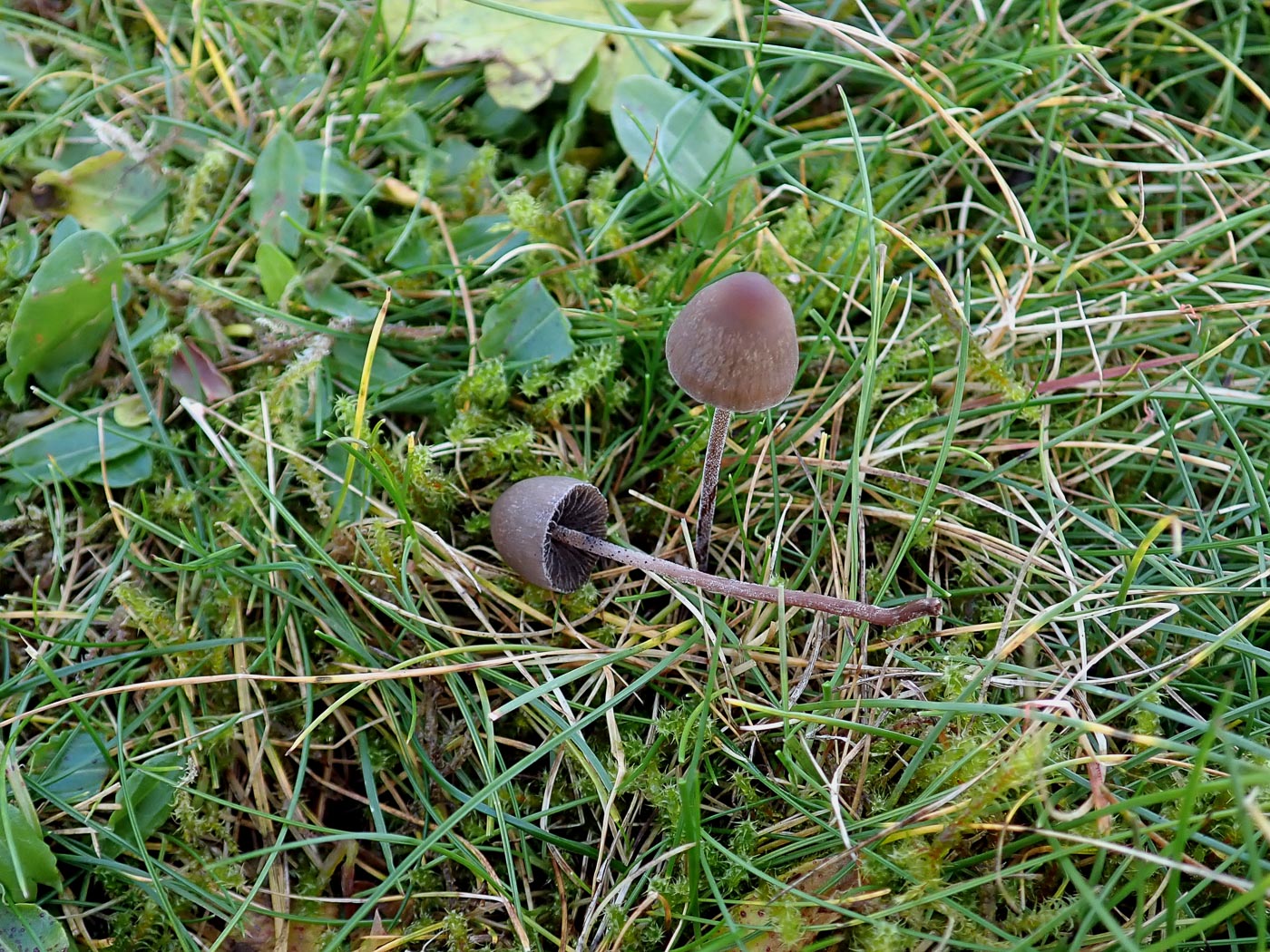
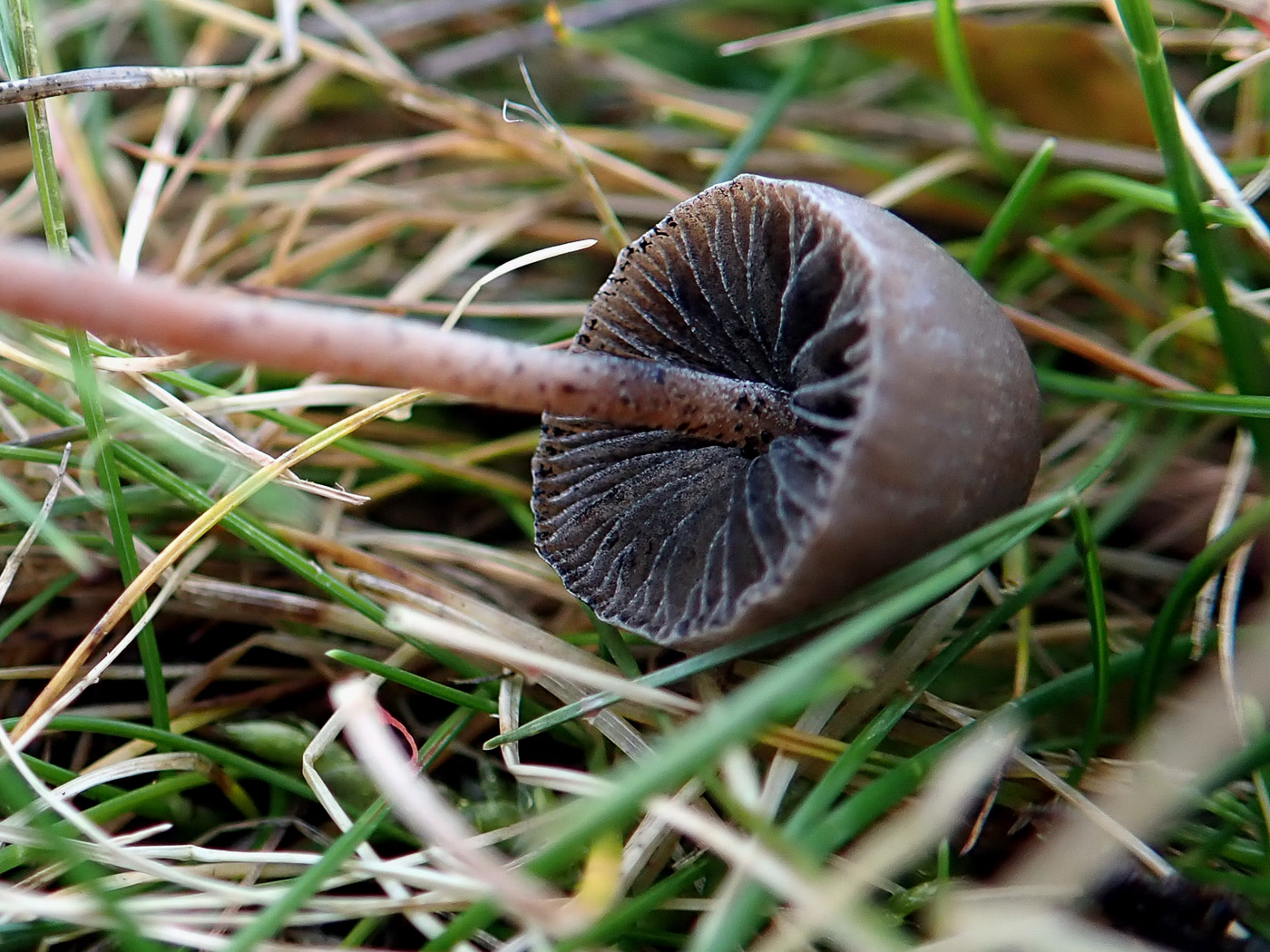 |
November 12th Panaeolina foenisecii (Brown Mottlegill) 
On the cricket pitch at Ibstone Common Penny C. found this typical grassland LBJ. Often one of the first mushrooms to appear on lawns in autumn, another name for it is Mower's Mushroom and it's somewhat surprising that we haven't noted it before. Previously in the closely related genus Panaeolus, it has the typical blotchy dark crowded gills of that genus (seen in photo 2) and the brown cap is often much more faded than seen here after recent rain. It never gets much above 4 cm high by 1 cm across.
|
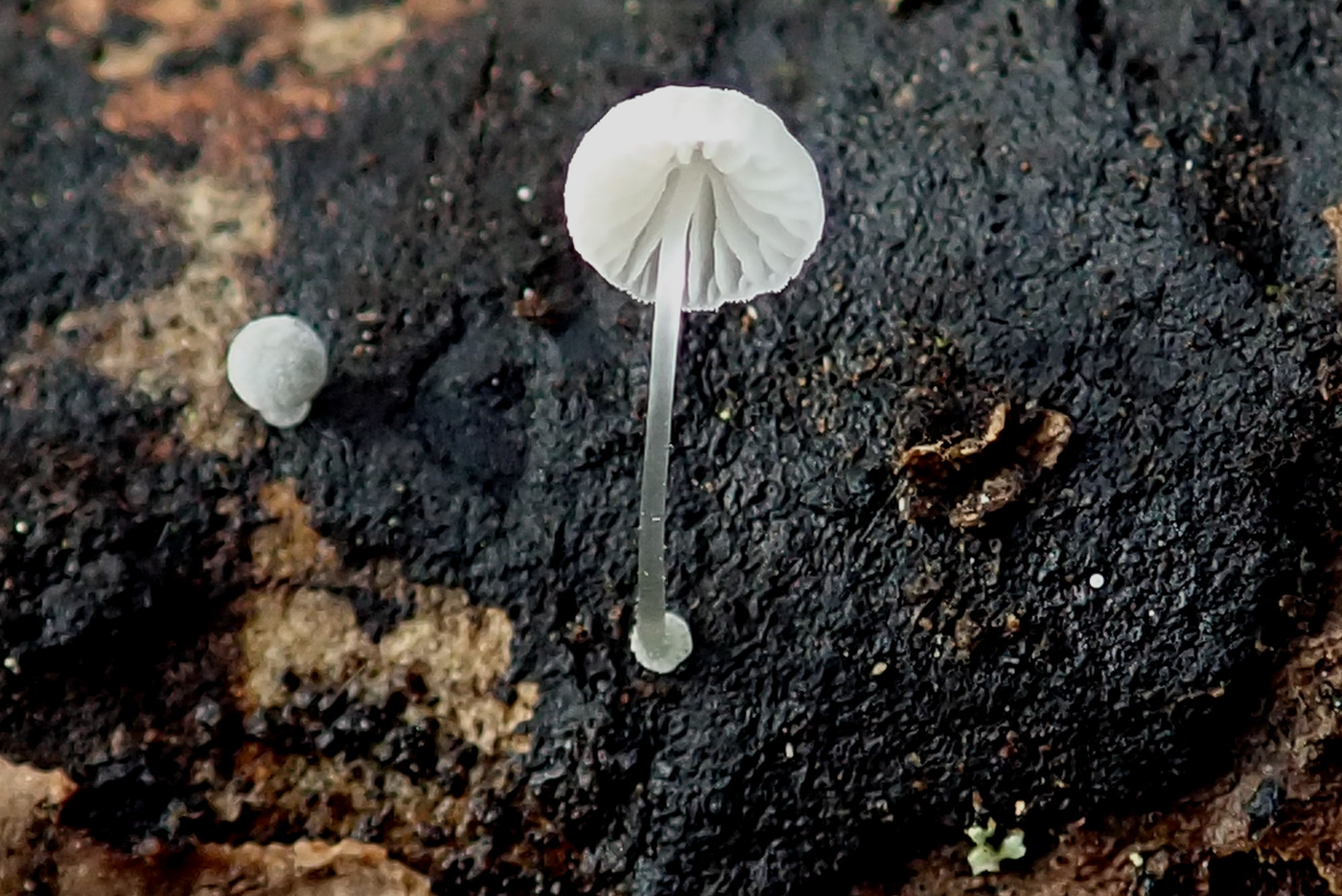 |
November 12th Mycena tenerrima (Frosty Bonnet) 
On a deciduous stick in Ibstone Common Penny C. spotted this tiny white Mycena and on closer inspection noted that the stem had a disc where it attached to the stick. This feature, though pretty small, is significant when it comes to working out which of the many tiny white Bonnets you have because most species don't have one and can thus be eliminated. The cap was under 4 mm across and stem not much taller than that, so some care is needed when preparing a tiny piece of gill edge to view with a scope! This achieved, however, the cells she found together with the presence of the disc made the identification easy. The species was previously known as M. adscendens.
|
November 11th 2020
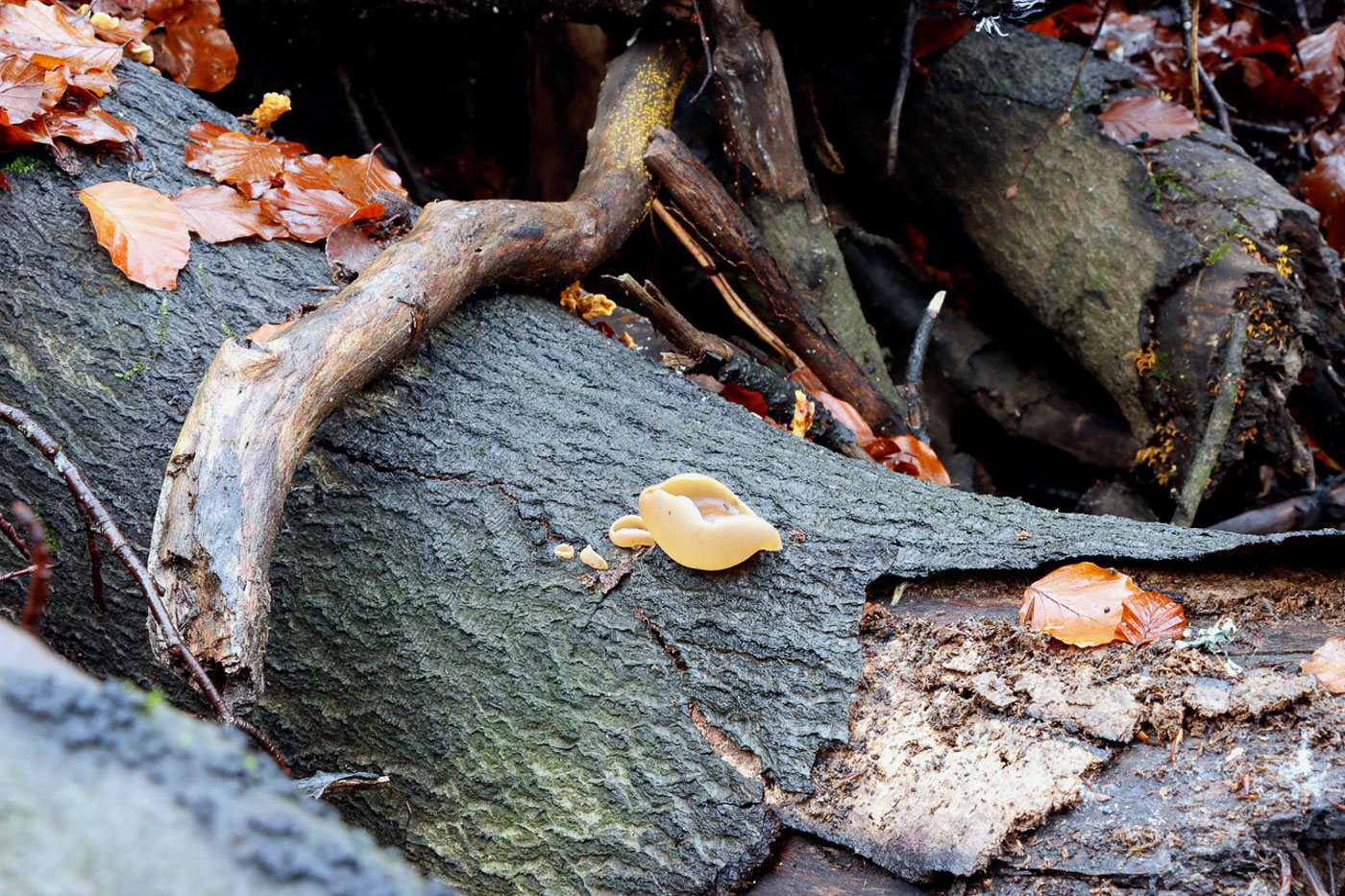
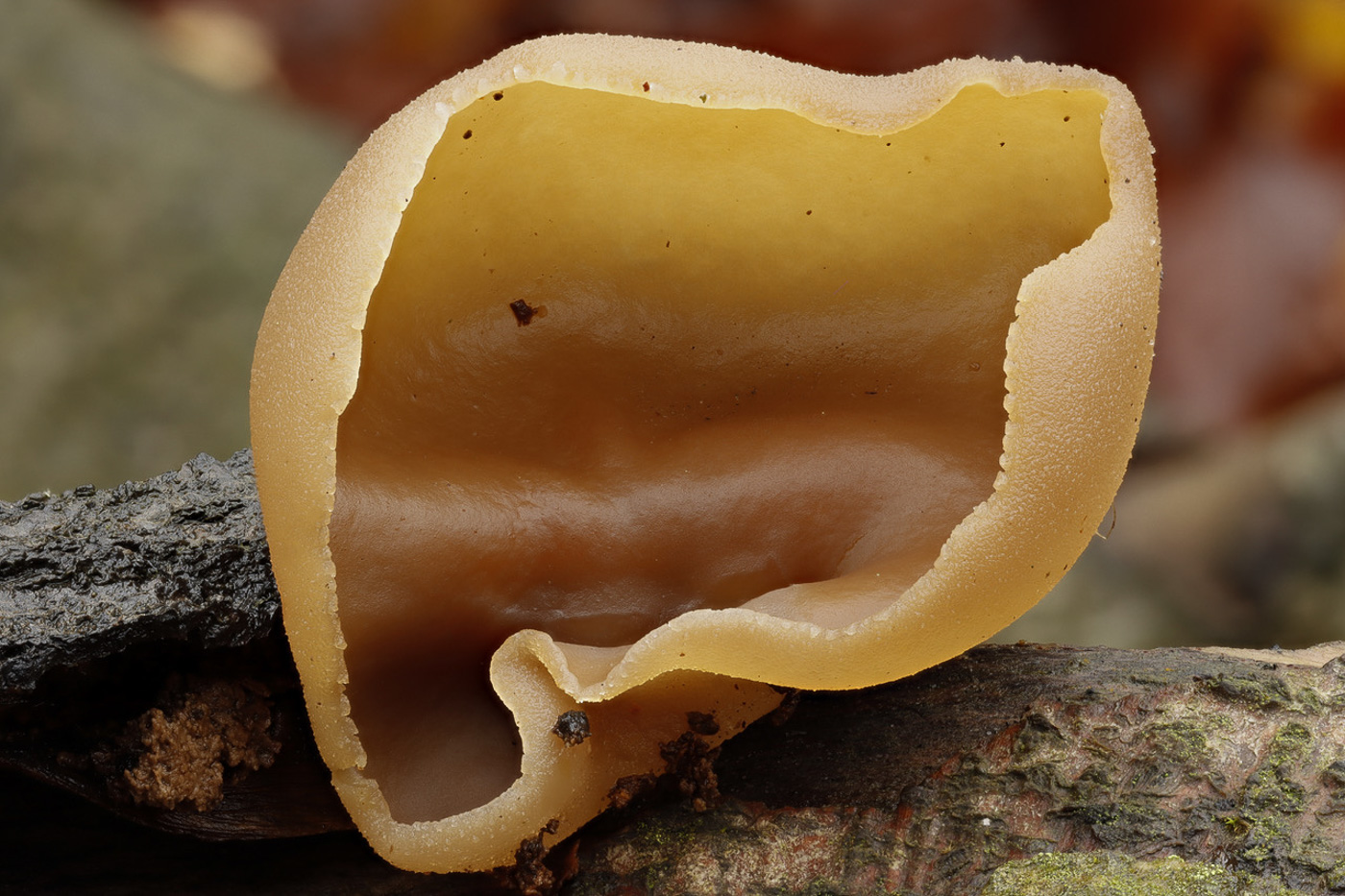 |
November 11th Peziza micropus (a Cup with no common name) 
Paul Goby found this nice fresh Peziza growing on fallen Beech in Naphill Common. This species is one of several quite common Cups which look extremely similar and can only be separated using a scope. This particular species favours Beech, often on the bark as here, and has a very short stem (hence its Latin species name) - so short that it's not visible unless the fruit body is removed from the substrate! The cup measured about 5 cm across.
|
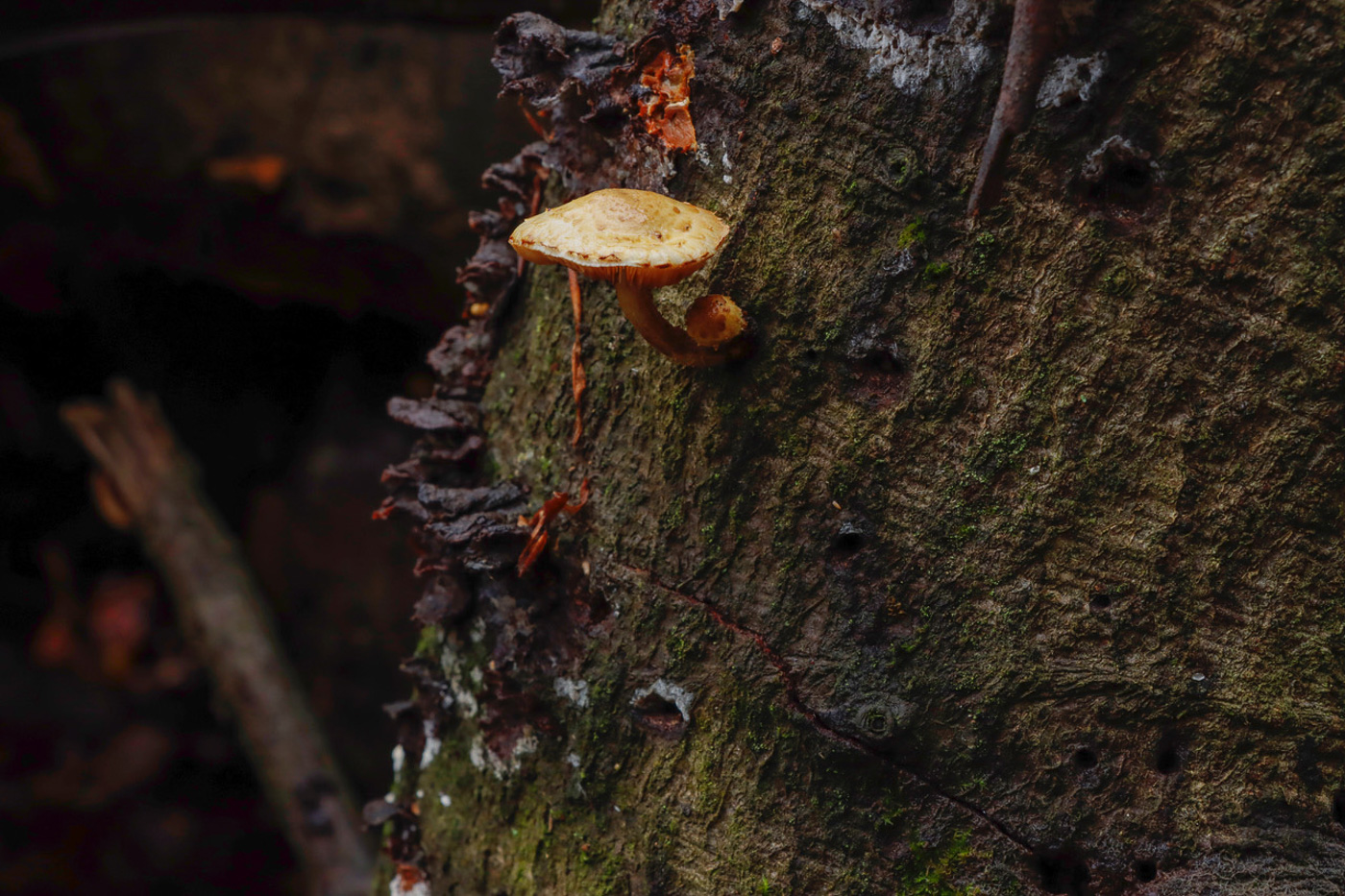
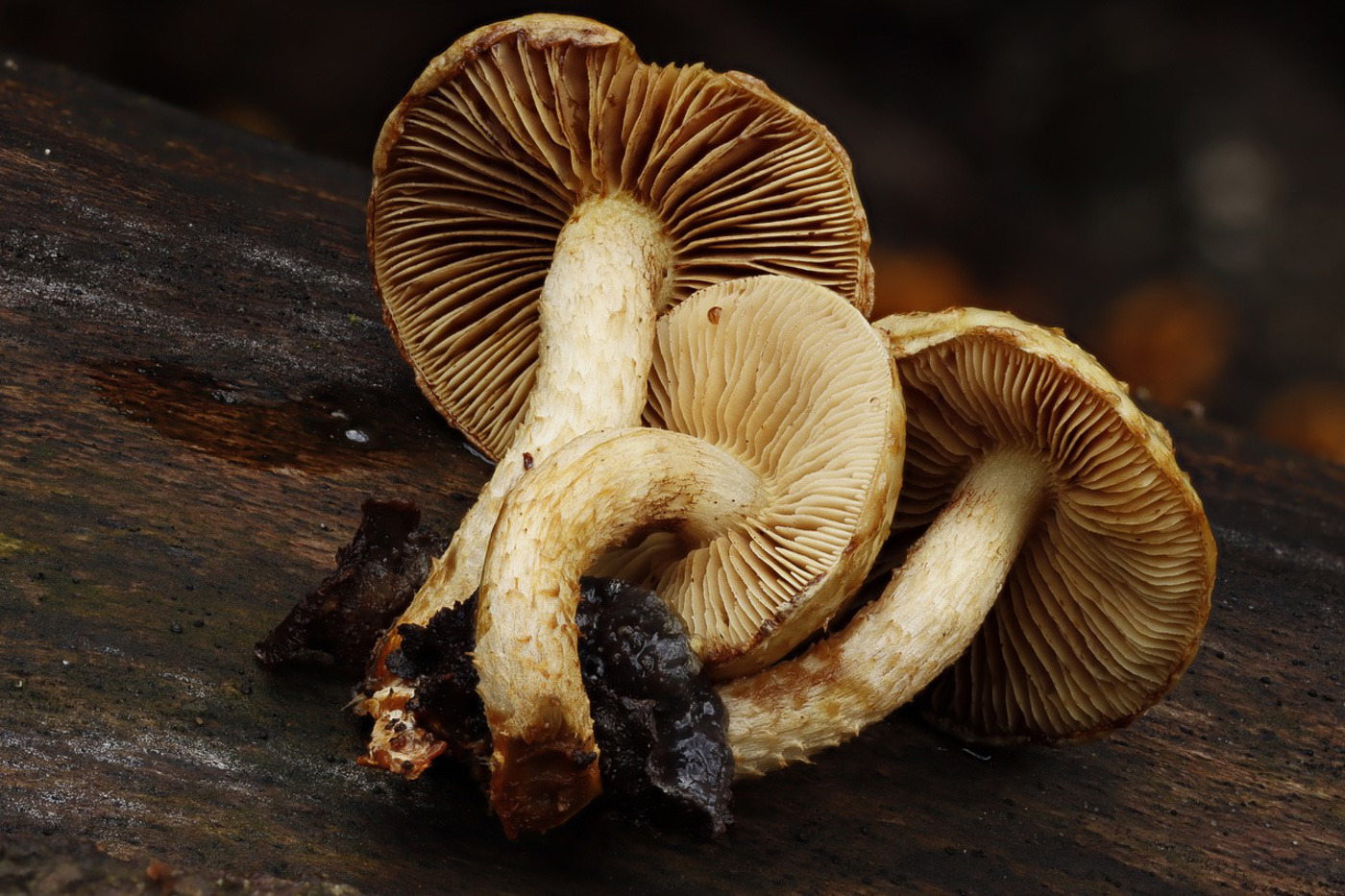
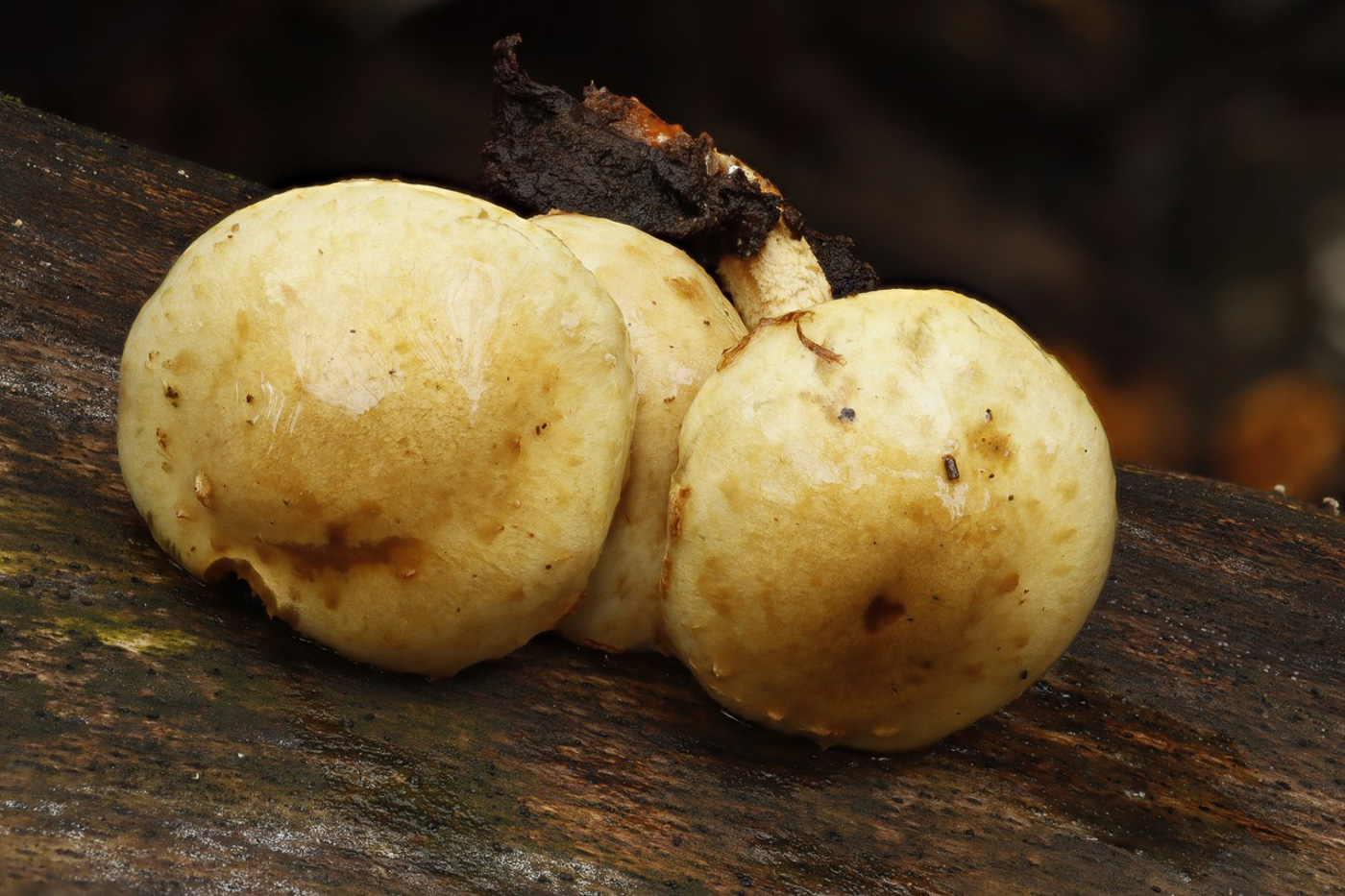 |
November 11th Pholiota gummosa (Sticky Scalycap)
Paul Goby also spotted this species well hidden in a large Beech pile in Naphill Common. This is a rather pale capped Pholiota, not as big as the commoner P. squarrosa and the like, and in fact more often found on the ground on submerged deciduous roots though today actually on wood. Caps are dirty greenish yellow olive with small darker scales often lost in the slimy coating but usually retained around the margin (visible here in photo 1 on the singleton specimen). Gills and stems are more or less concolorous though the stem is dry and finely scaly (visible in photo 2). Quite a common species but when in paths and apparently on soil, not wood, it can often be hard to identify.
|
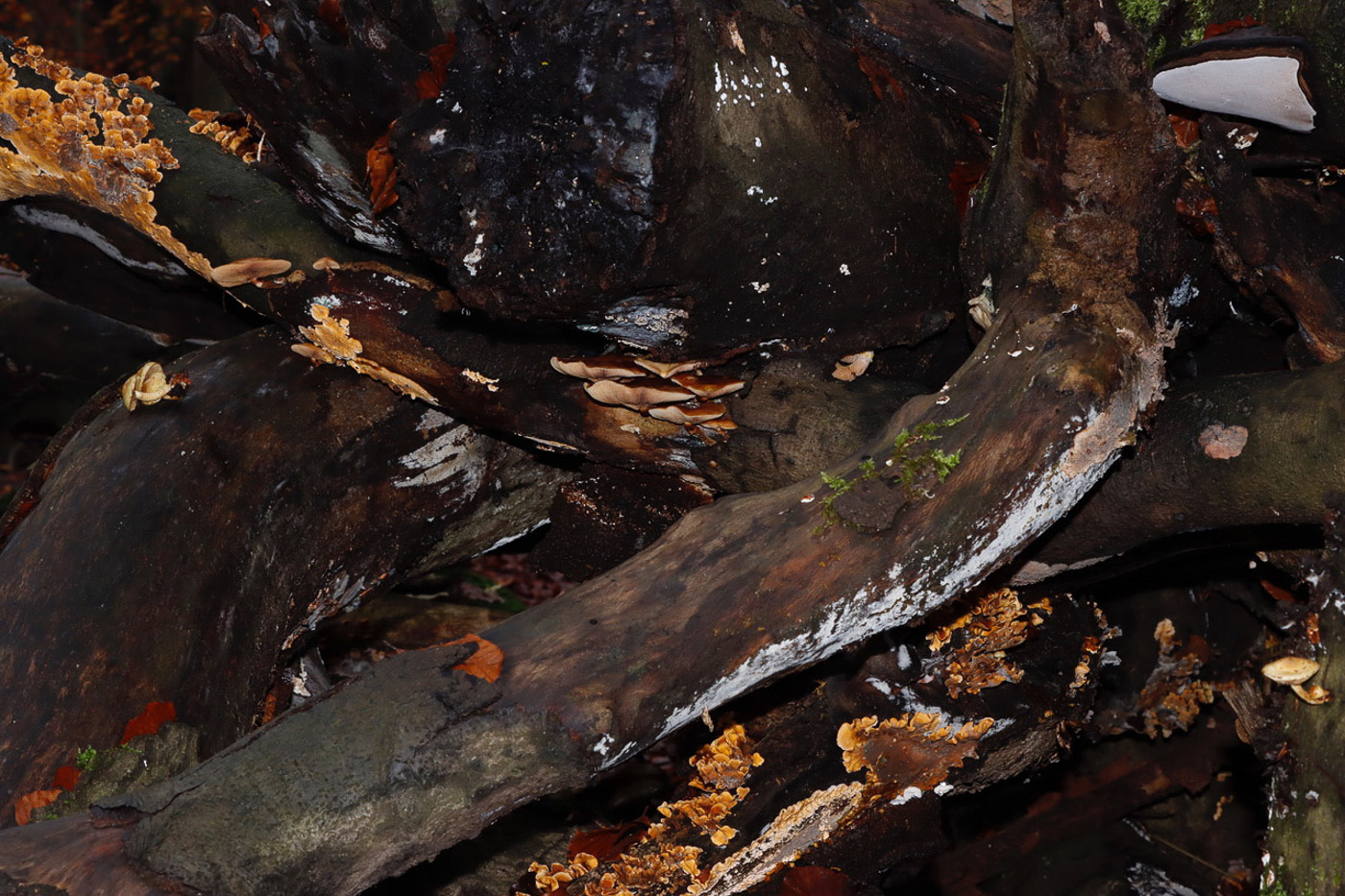
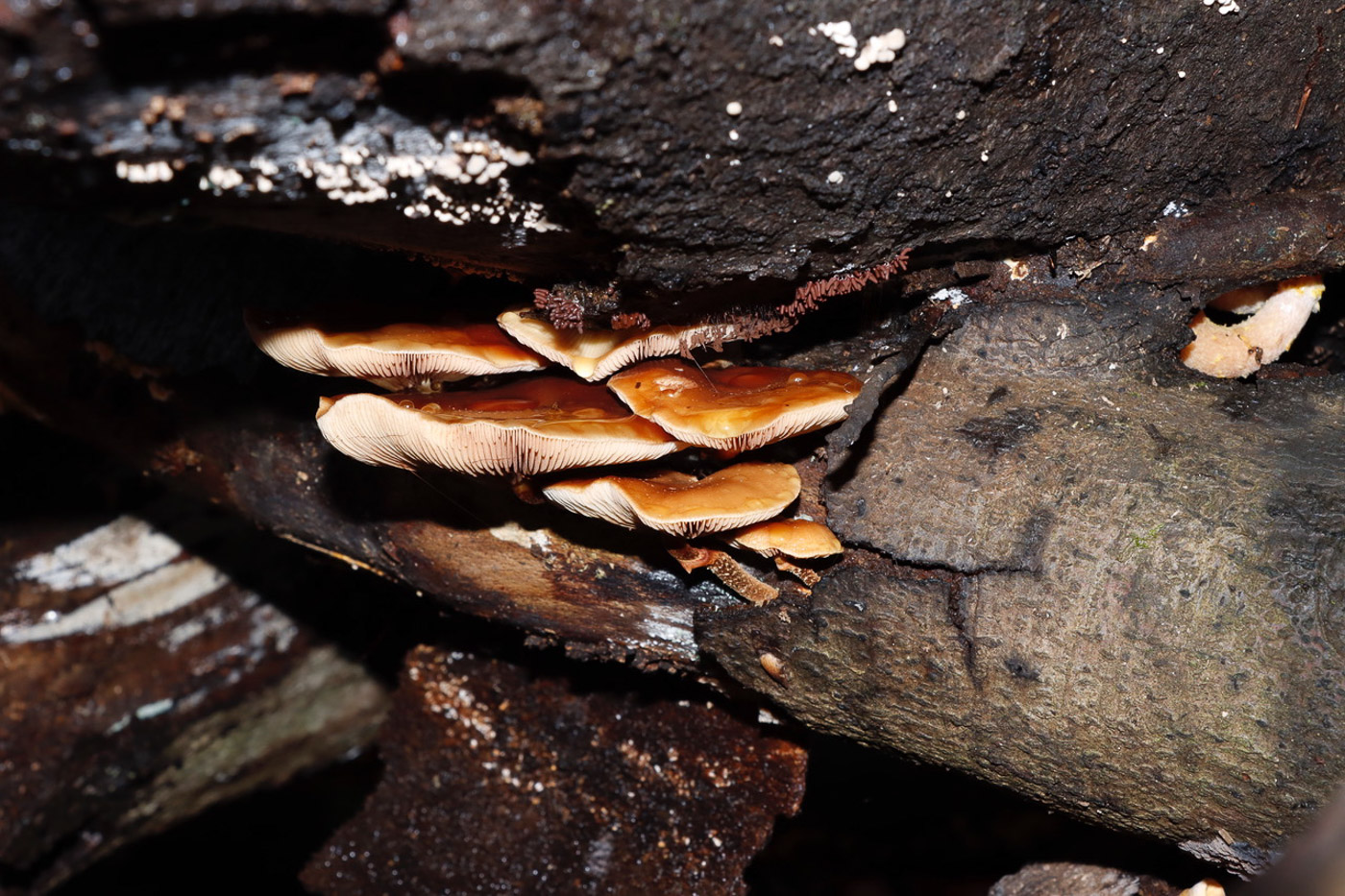
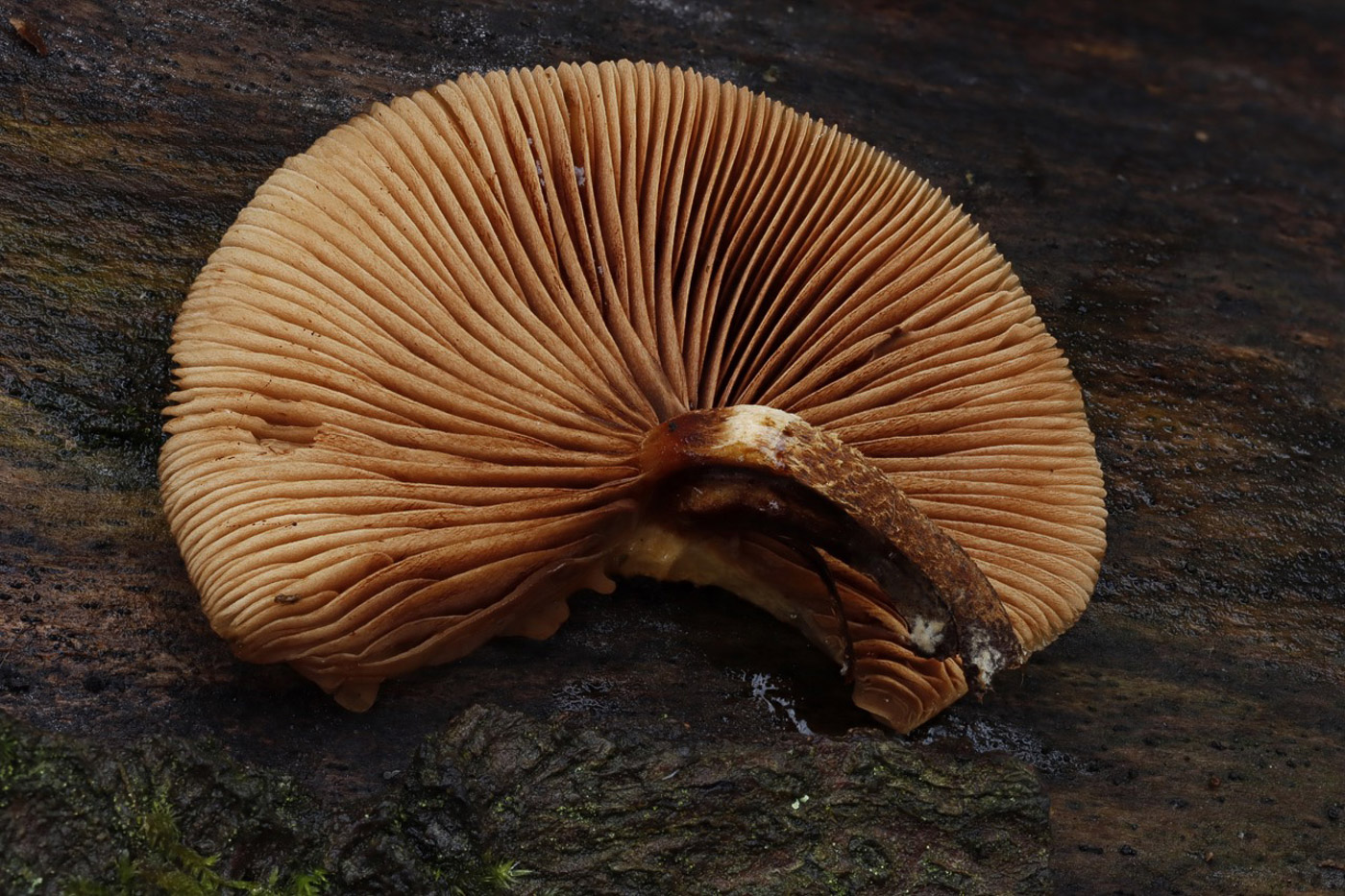 |
November 11th Galerina marginata (Funeral Bell)
Paul Goby somehow managed to spot and photograph this well hidden collection in a large pile of fallen Beech in Naphill Common.This quite common species of Bell (dangerously poisonous - hence its common name) tends to fruit late in the season and grows in clusters on fallen wood, both deciduous and conifer. Caps are about 3 cm across, typically rusty yellow brown for the genus, usually sticky - more so after rain; gills are quite crowded and paler than cap; stems have a distinct ring or ring zone and below this are floccose fibrillose becoming darker towards the base.
|
November 10th 2020
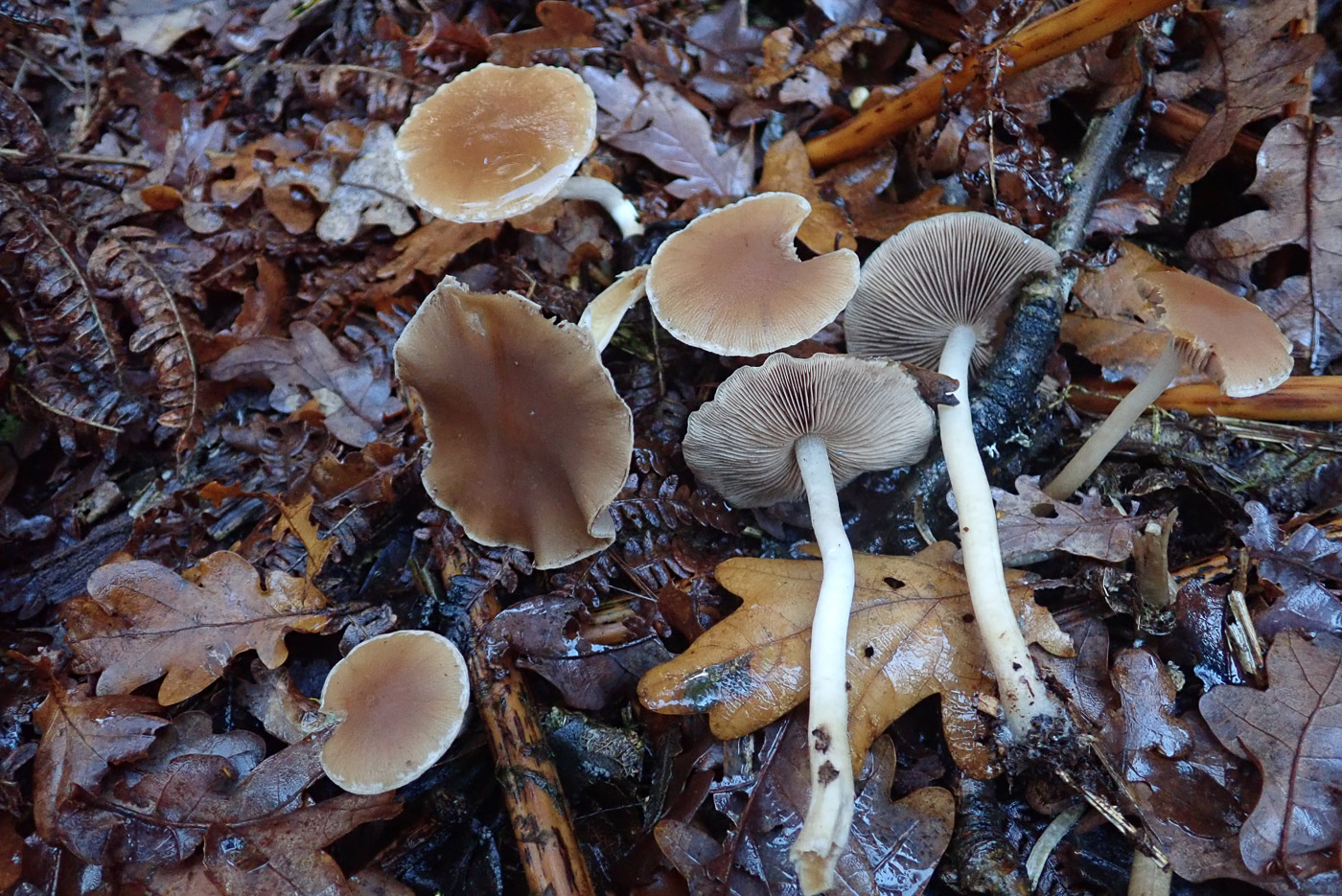
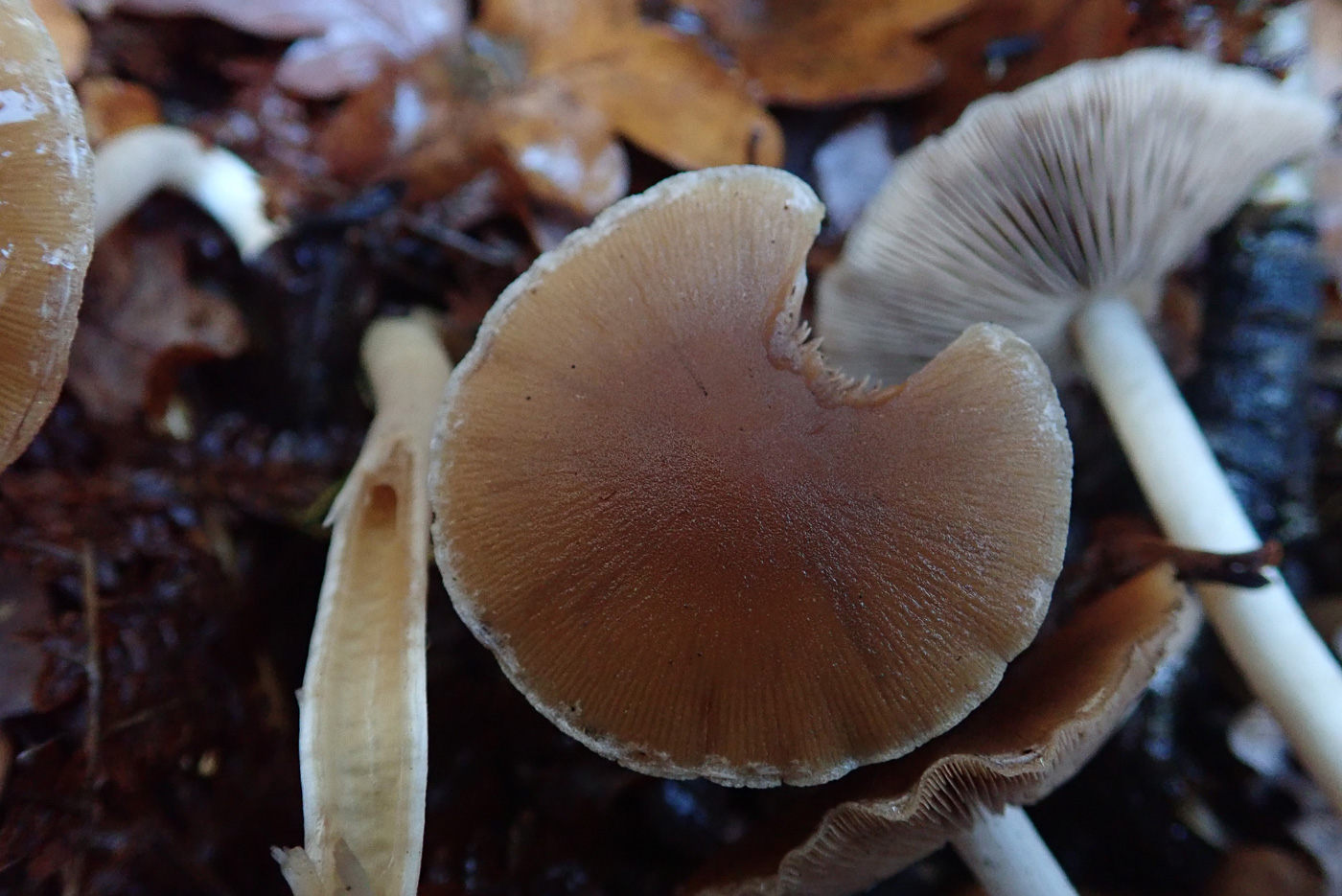
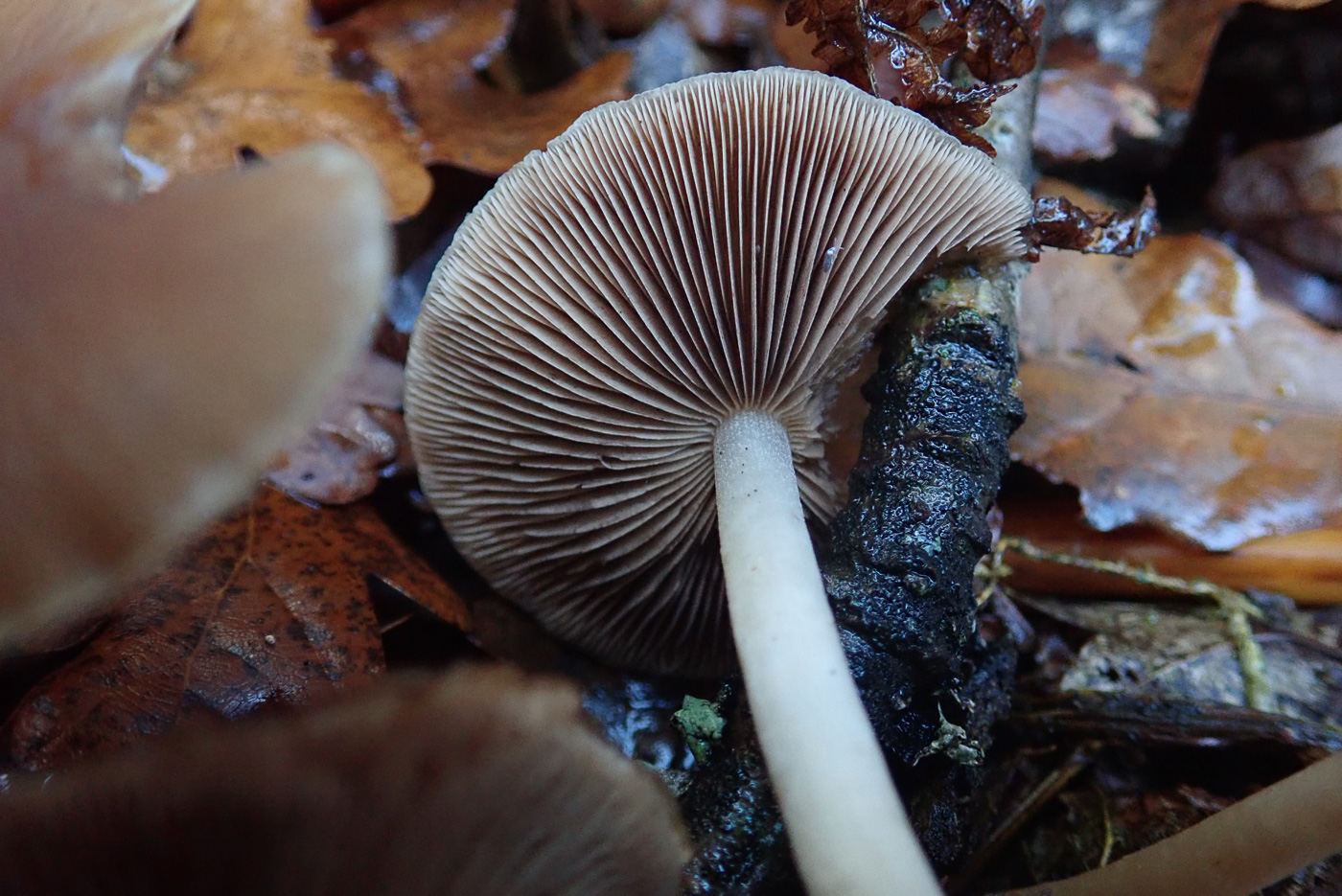 |
November 10th Psathyrella candolleana Psathyrella candolleana 
Penny C. found this collection od a very common Psathyrella which we somehow missed earlier in the season. It was in Naphill Common in vegetation near a grassy path and Penny had her doubts in the field if it was this species as it was clearly defying its common name! Usually with pale cream caps which have torn bits of white veil attached to the margin and also one of the first autumn mushrooms to appear at path sides, the caps today - 3 cm across - were bright brown with just a hint of veil around the margin (see photo 2) but not torn in their characteristic way. Clearly the recent rain had thoroughly drenched them and the usual fading as it developed had been postponed! Gills are very crowded and the longish stem is typical of the genus. By the next morning the caps were pale beige, however.
|
November 9th 2020
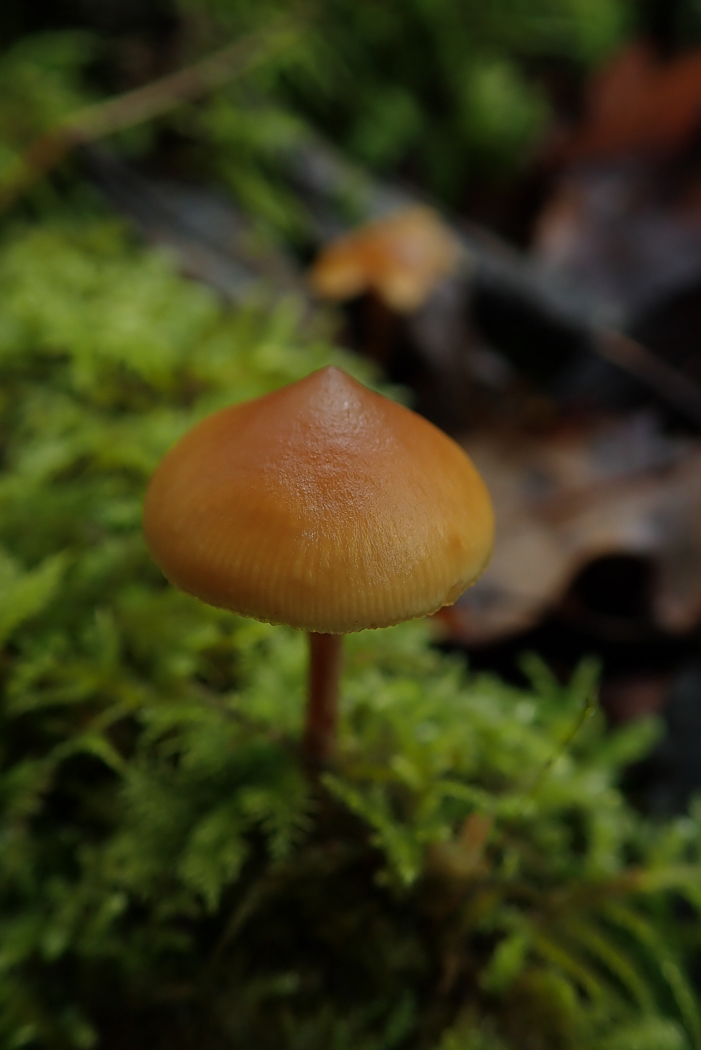
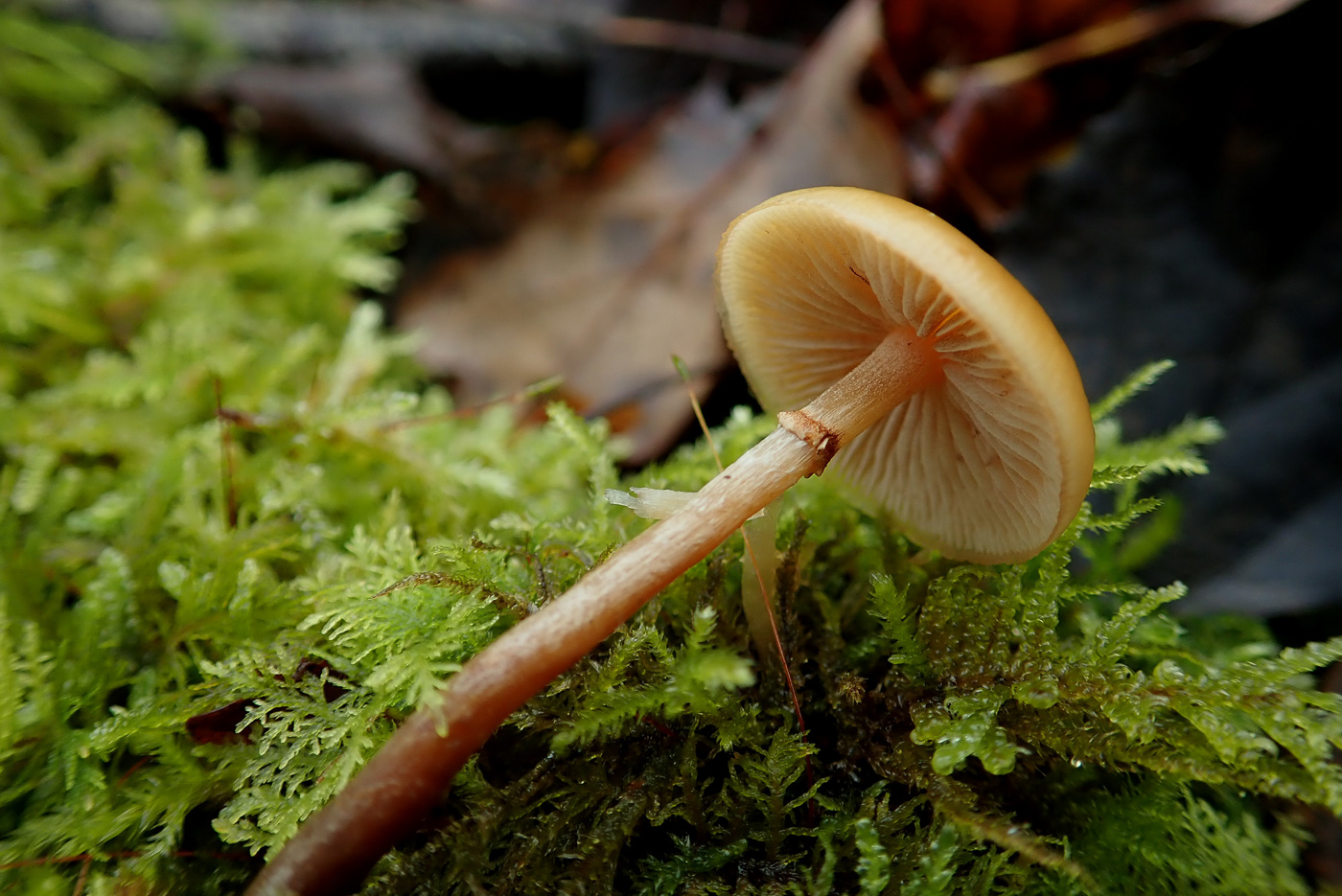 |
November 9th Galerina uncialis (a Bell with no common name) 
Penny C. found this singleton on a mossy log, probably Ash, in Rushbeds Wood. The cap was 2 cm across, umbonate, and stem about 4 cm long with a distinct ring, similar to that found in the common G. marginata which, however, grows in large numbers rather than singly and lacks an umbo. It took thought overnight and much work to sort out what this was, partly because the main key used gave the substrate as terrestrial causing me to pass it by. However, other sources gave mossy woody substrates as well as soil, and once I'd realised this everything else fitted like a glove including all microscopic details. This is new to the county and has very few British records.
|
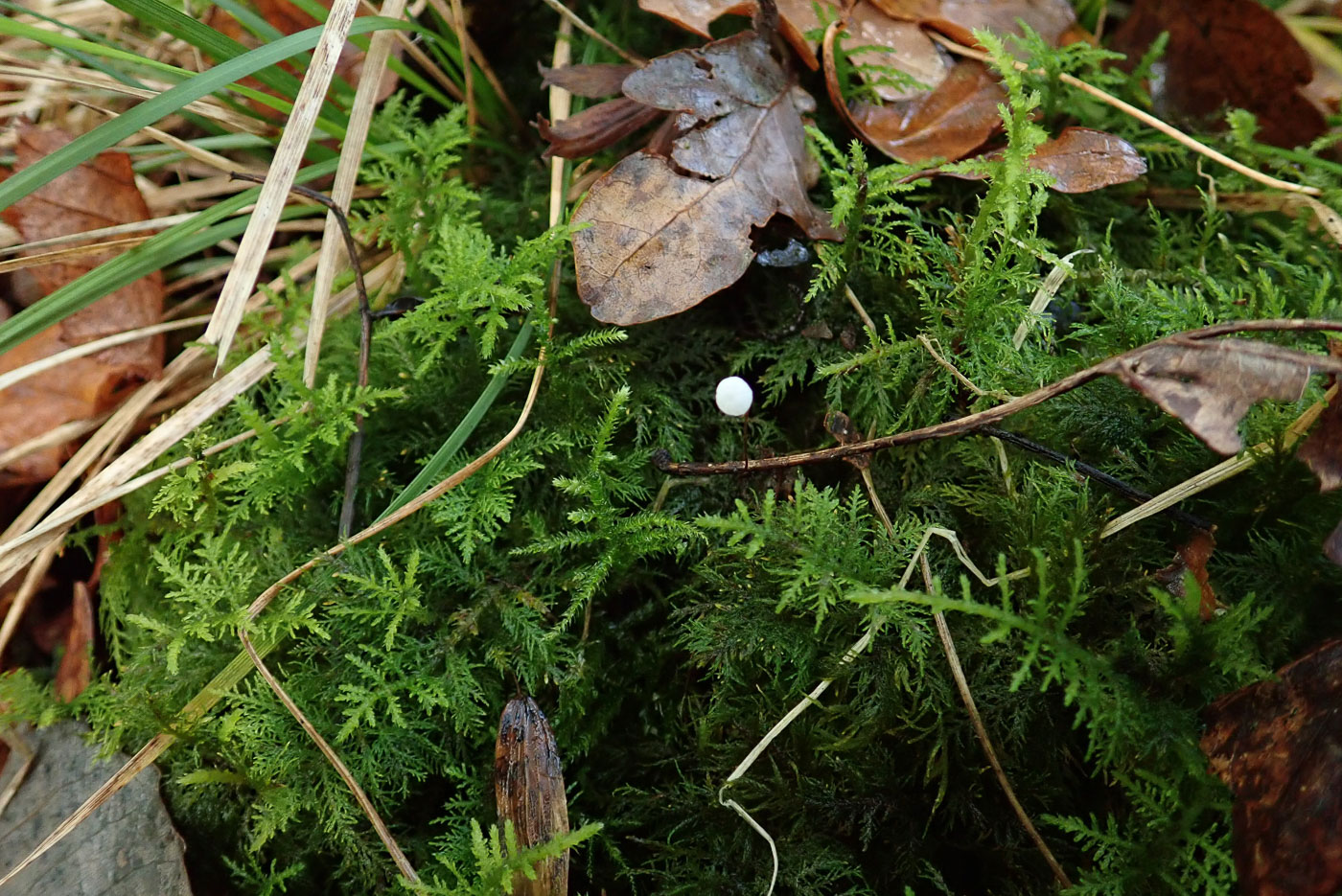
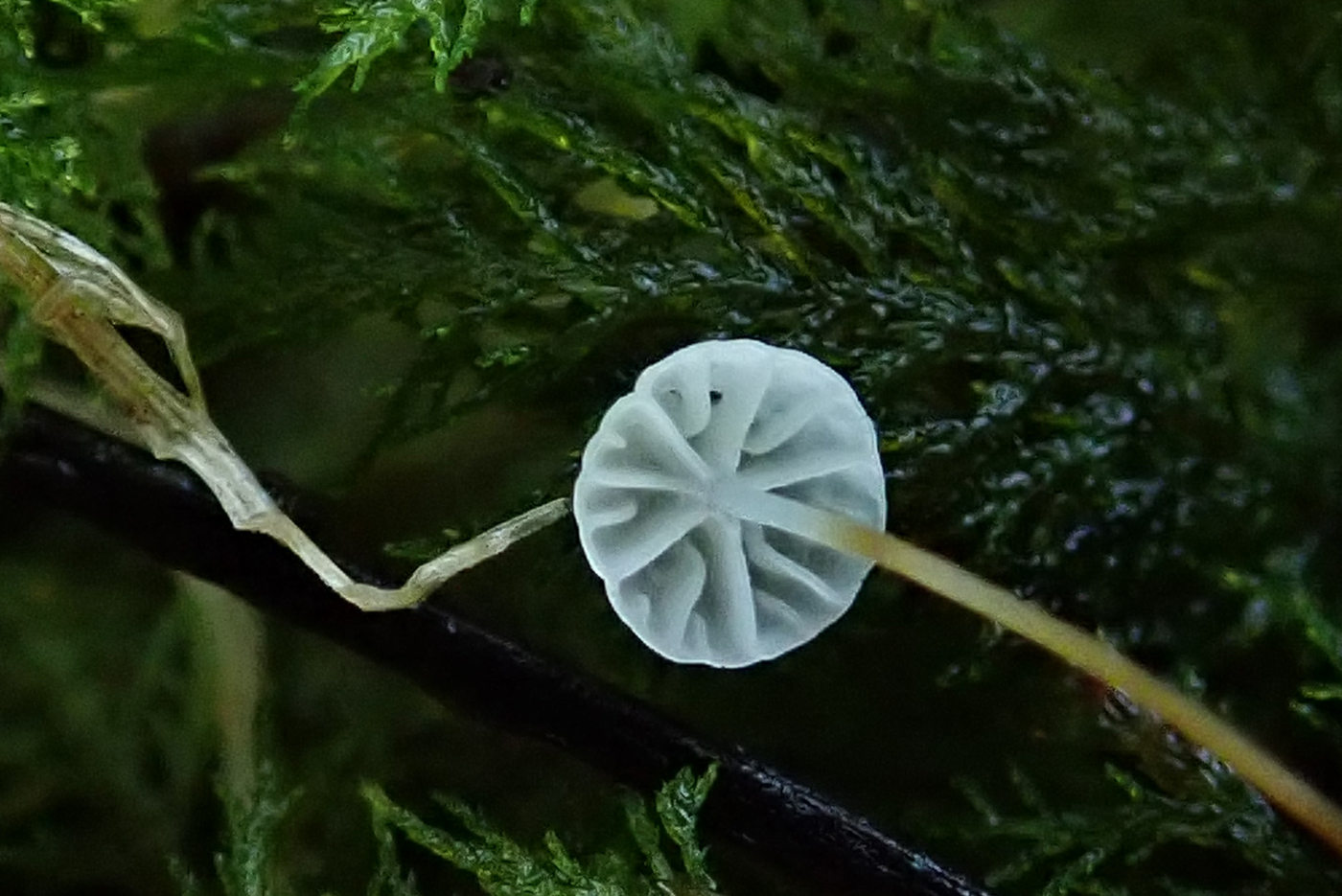 |
November 9th Marasmius epiphyllus (Leaf Parachute) 
Whilst searching amongst leaf litter and moss in Rushbeds Wood, Penny C. noticed a tiny shining white dot which needed further inspection. Sure enough, though only about 2 mm across it had gills and a stem and was attached to an Ash leaf petiole - the second species to be found on this substrate here today. The genus was immediately obvious because of the hairlike stem which was white at the top but gradually rusty red then black lower down - typical of Marasmius rather than Mycena which can also produce tiny very similar white fruit bodies but they usually have an entirely white stem. There are several very similar tiny white Marasmius species and it's important to note the exact substrate as well as to look at microscopic features at home. Today's species is typically found on Ash or Poplar petioles but look out for the almost identical M. setosus on Beech leaf petioles! They may be tiny but once you get your eye in they are not difficult to see.
|
 |
November 9th Lachnum virgineum (Snowy Disco) 
Penny C. noticed this colony of tiny white cups on the end of a dead but attached Hazel twig in Rushbeds Wood. Caps were up to about 3 mm across, and they had a small hairy white stem underneath. There are many species of Lachnum, all tiny, some have a stem - some don't, some are hairy - some are smooth, some are white - some are coloured. See also another white hairy stemmed species, L. niveum (dated Sept 20) which has droplets in its stem hairs and missing from today's species. This is the commonest white hairy stemmed species and can often be found in large swarms on many different woody substrates. It is always necessary to confirm the determination at home with a scope, however.
|
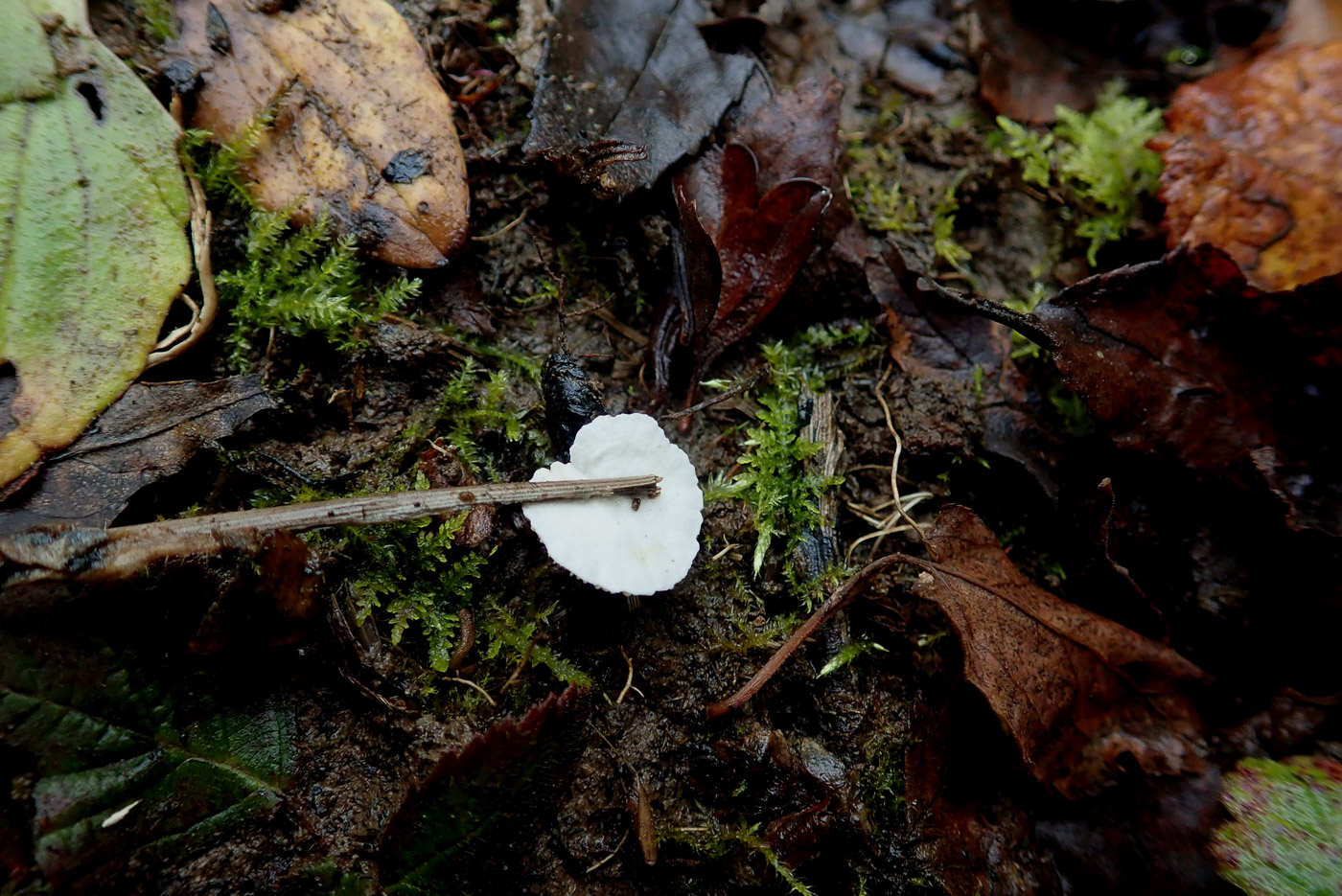
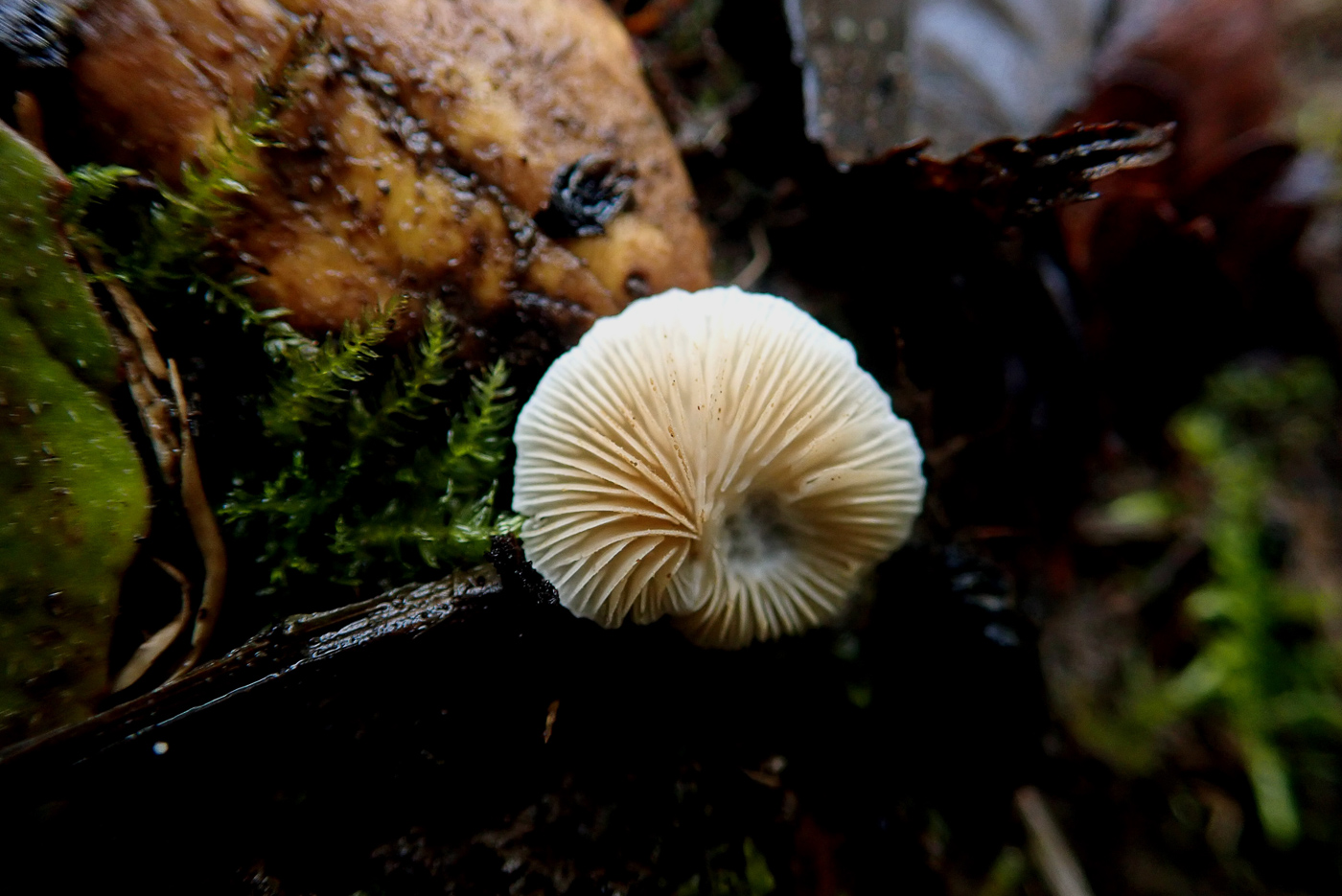 |
November 9th Crepidotus epibryus (Grass Oysterling) 
Whilst on her knees taking a photo of something different in Rushbeds Wood, Penny C. noticed this small white cap on the end of an Ash leaf petiole. Turning it over and realising it was a Crepidotus, she knew it was likely to be this particular species which grows not on woody debris but on old stems of vegetation including leaf petioles as here. It still needed to be checked at home to confirm, however.
|
November 8th 2020
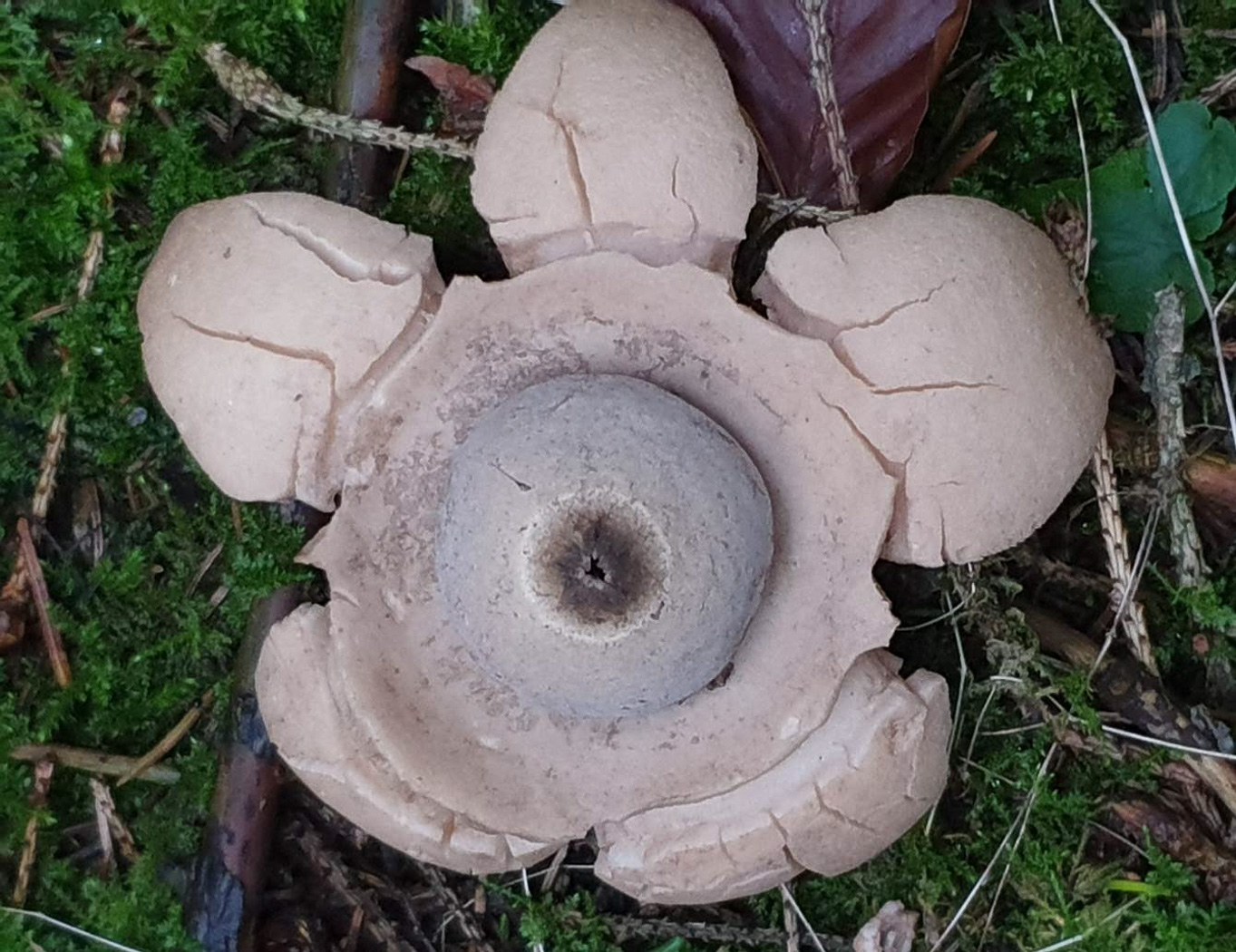
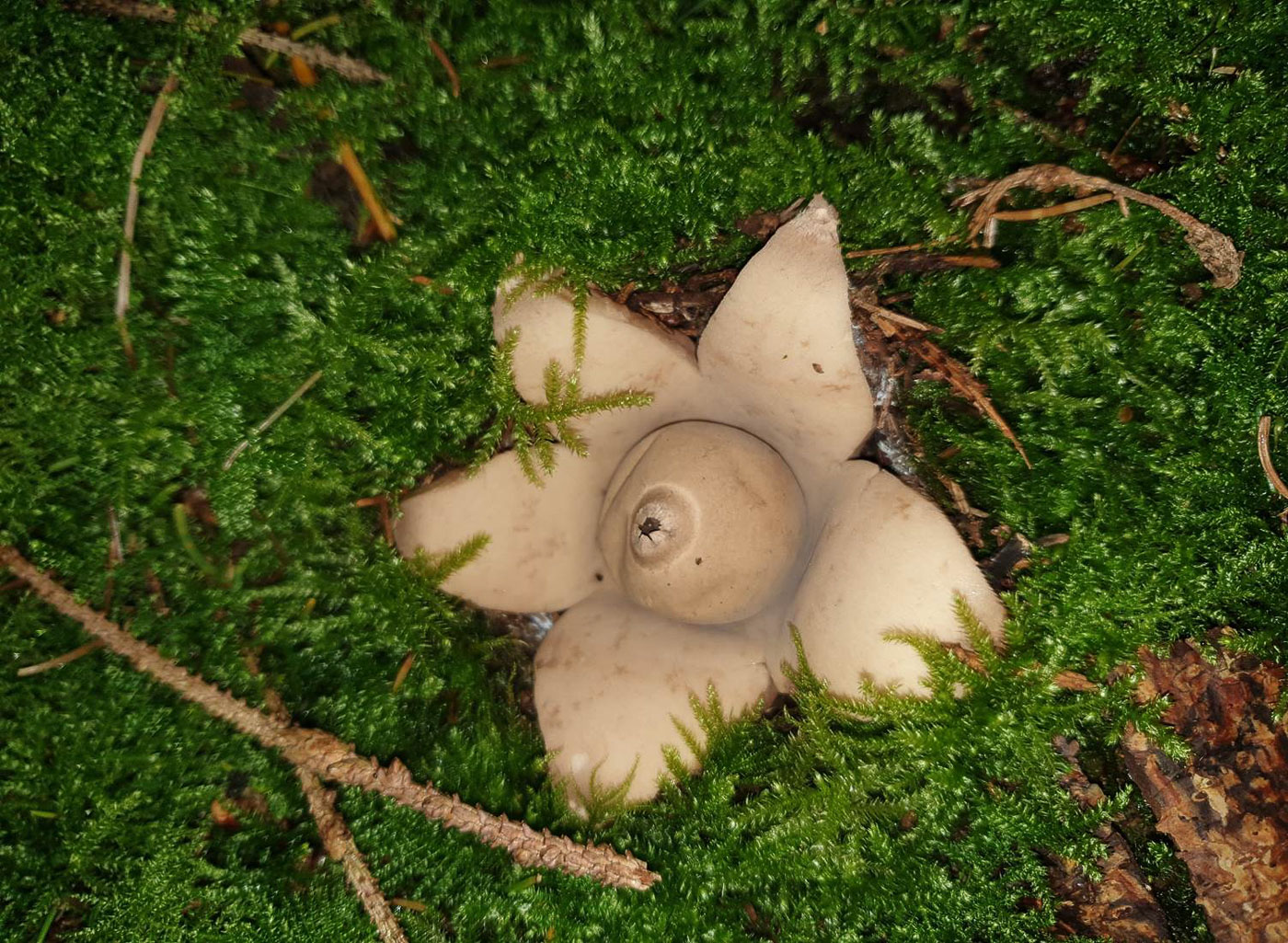 |
November 8th Geastrum triplex (Collared Earthstar)
Jackie McKenzie-Dodds and Justin Warhurst found two perfect examples of this species in Cadsden and although we already have photos (see dated Sept 04 and Oct 03) these illustrate well how it can be found both with and without the collar referred to in the common name. Photo 1 clearly shows how the collar is formed as the rays expand and split, leaving the so called collar. In photo 2, however, the rays are all in tact, thus no collar. Earthstars once matured last a long time in the field so now is a good time look out for them in litter, both conifer and deciduous.
|
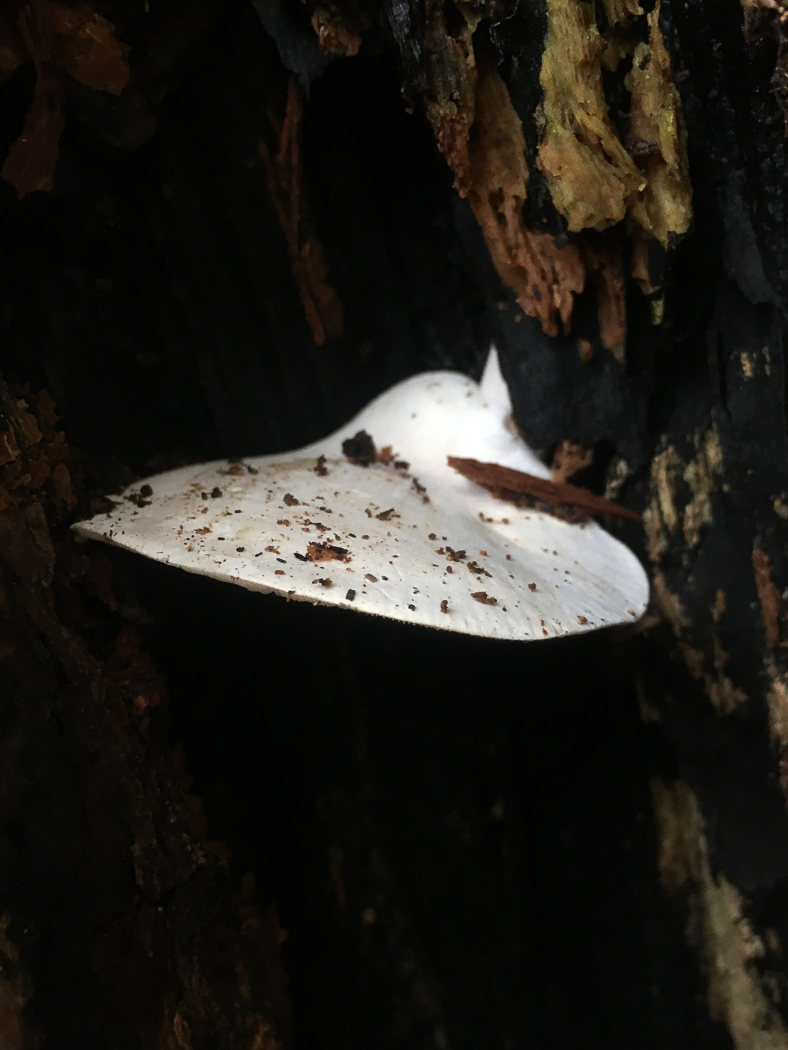
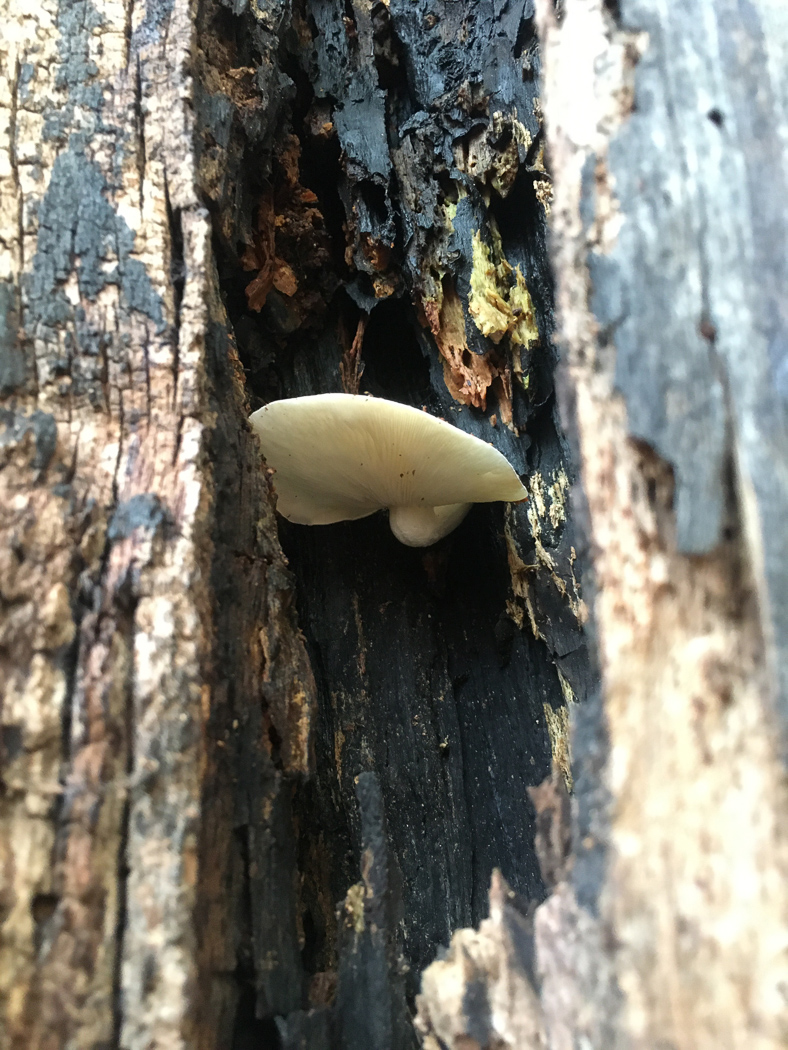
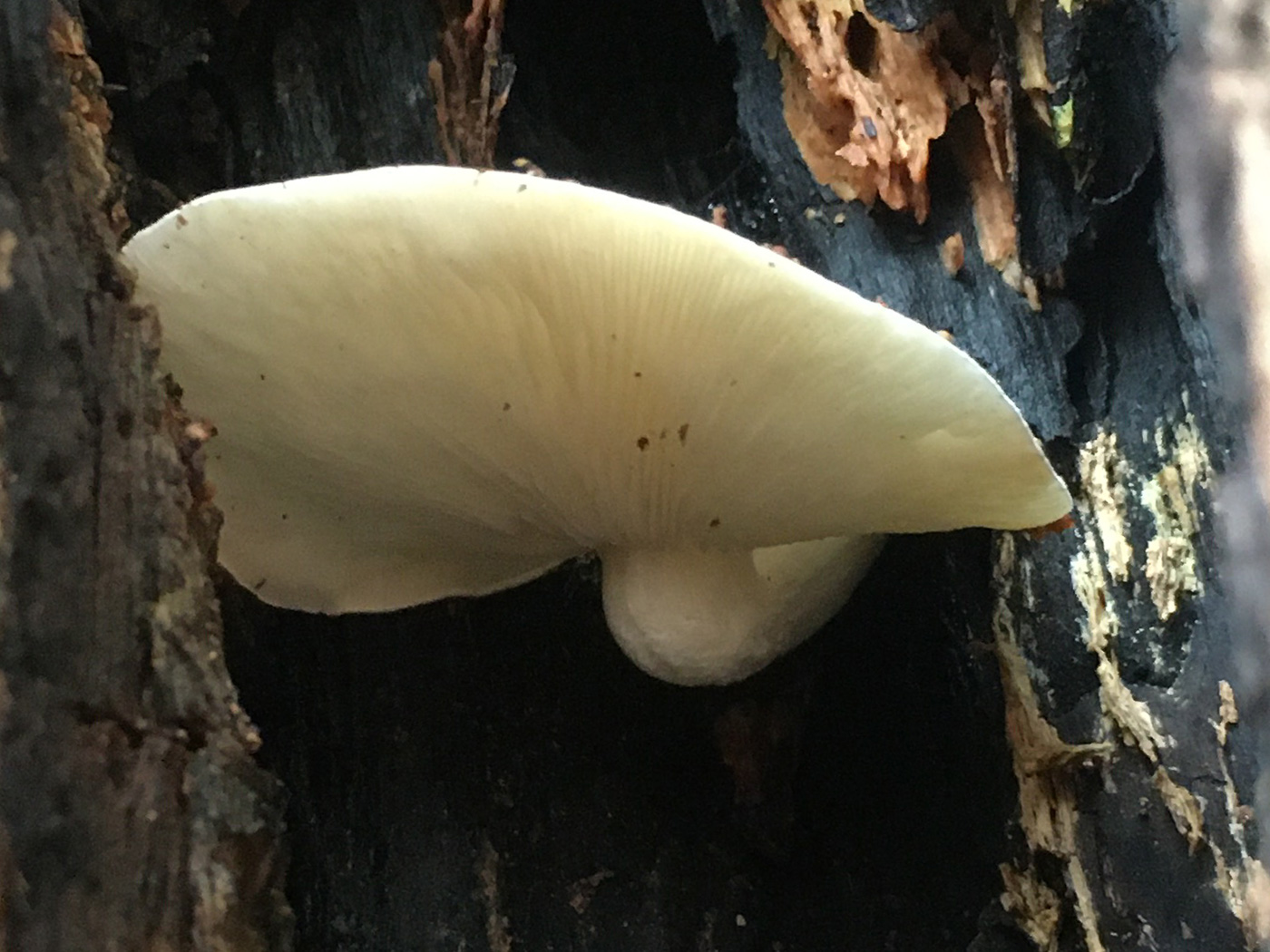 |
November 8th Ossicaulis lignatilis (Mealy Oyster)
Inside the bole of an old Beech trunk in Burnham Beeches Russell Ness found this rare species. Similar to the common Oyster in shape, the cap is pure white and has very crowded white gills (see photo 3) which are hardly decurrent. The substrate here is typical and the species is considered an indicator species of ancient woodland and particularly favours Beech. It has a faint mealy smell (hence it common name). We have just four previous county records so this was another nice find for Russell.
|
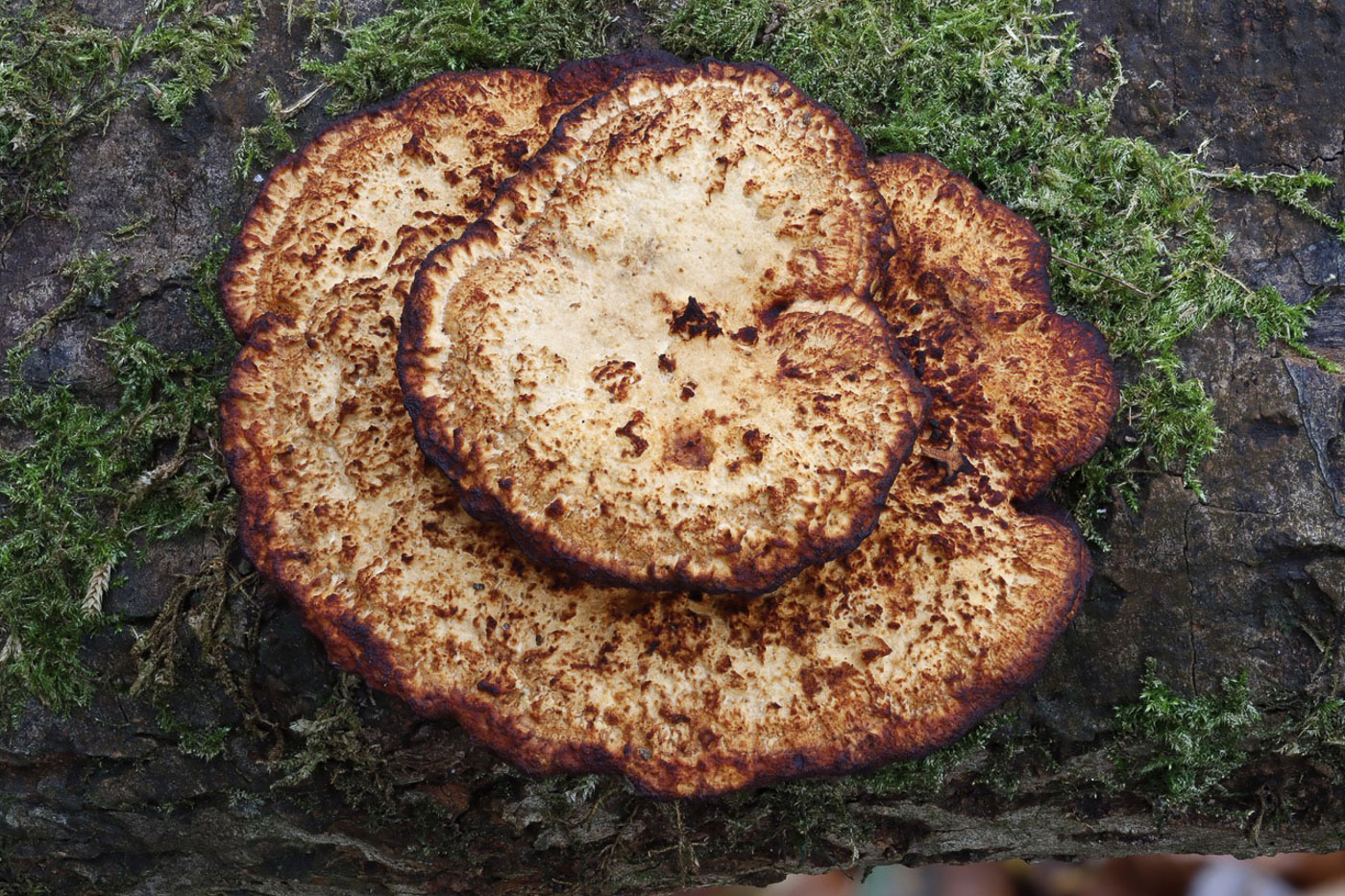
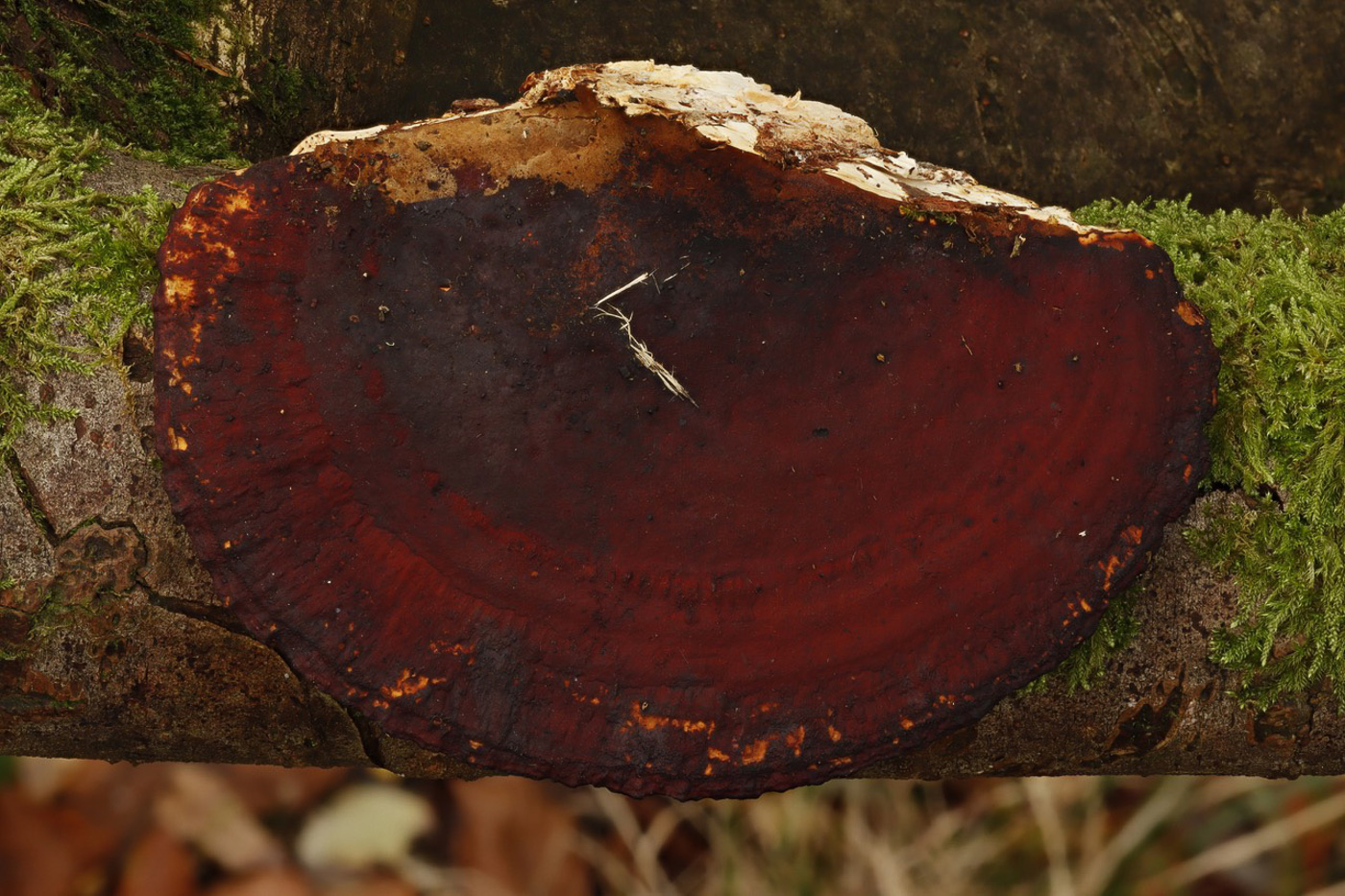
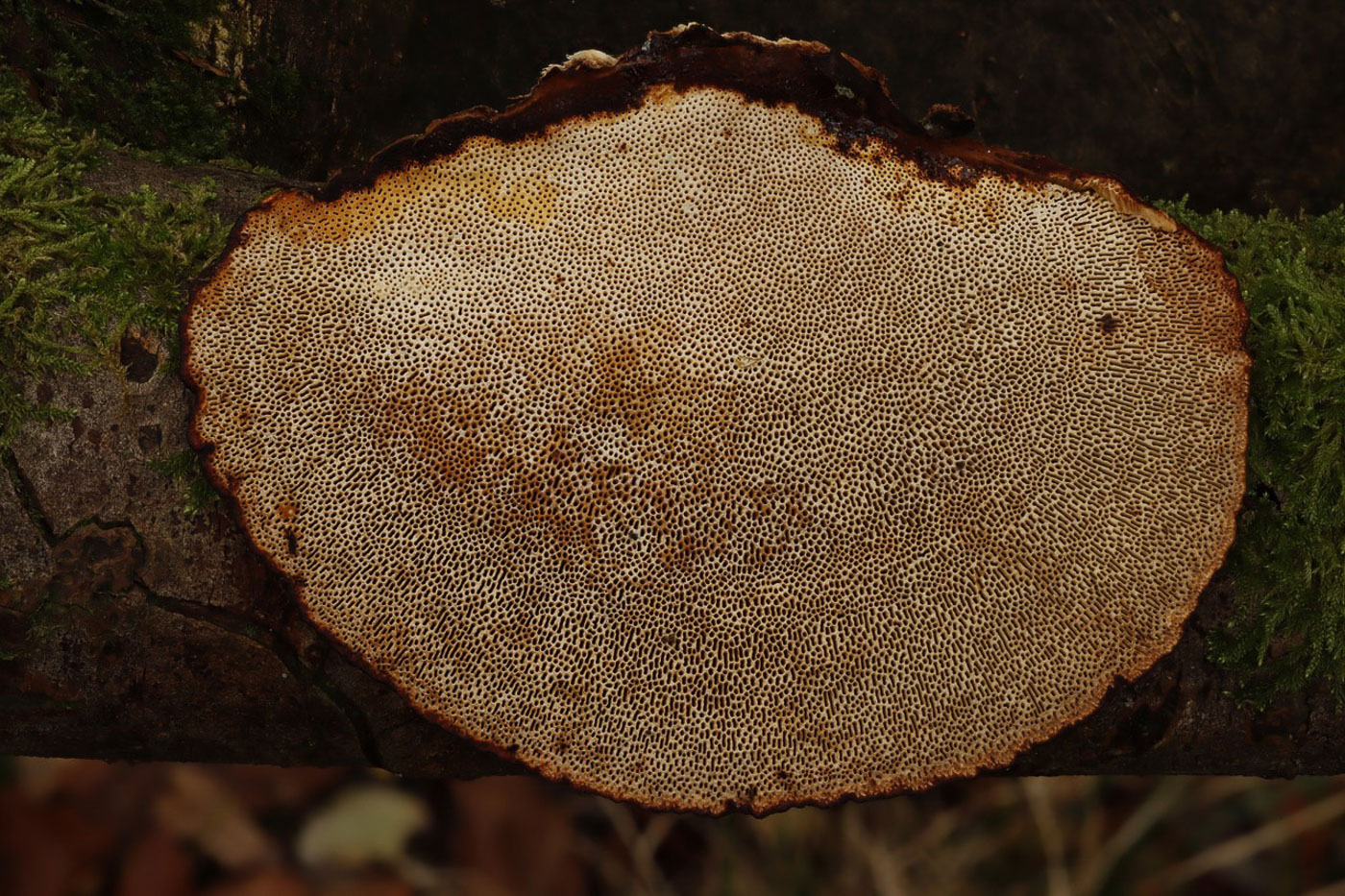 |
November 8th Daedaleopsis confragosa (Blushing Bracket)
We have photos of young fresh specimens of this very common bracket (dated Sept 10) but older dried up specimens are far harder to identify and often confuse because they are well past the stage of blushing pink when the pores are pressed. Thus the inclusion here of Paul Goby's find, from Naphill Common on fallen Willow - a favourite host along with Birch. The species typically forms semicircular zoned brackets but can also form complete rosettes as in photo 1, and often can be found with red colours, even entirely red as in photo 2. The pores underneath (photo 3) are small and round and only blush pink when pressed if really fresh and still slightly flexible, but quite quickly become too dry and hard to do this. So don't assume just because the pores don't blush that you have a different species!
|
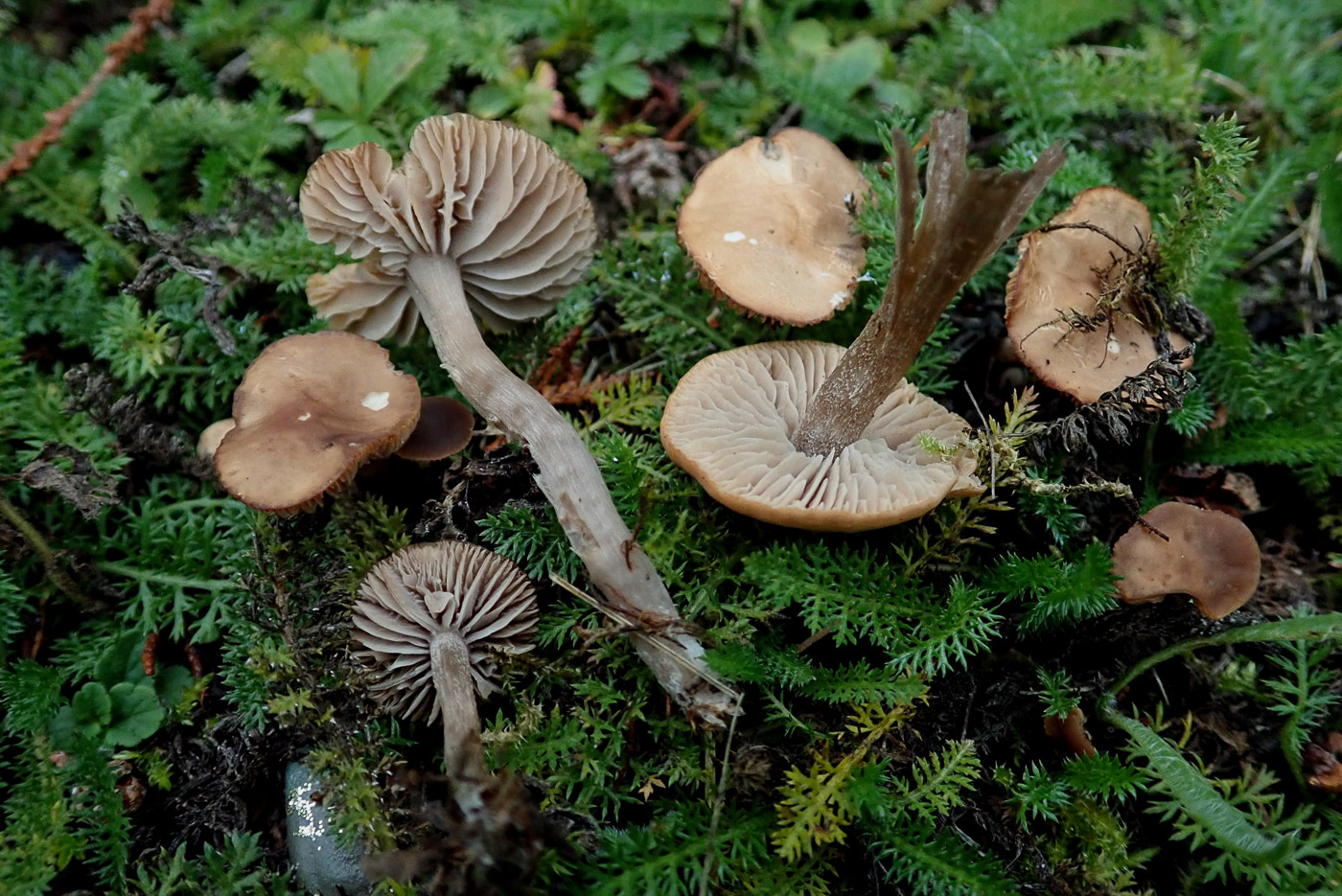
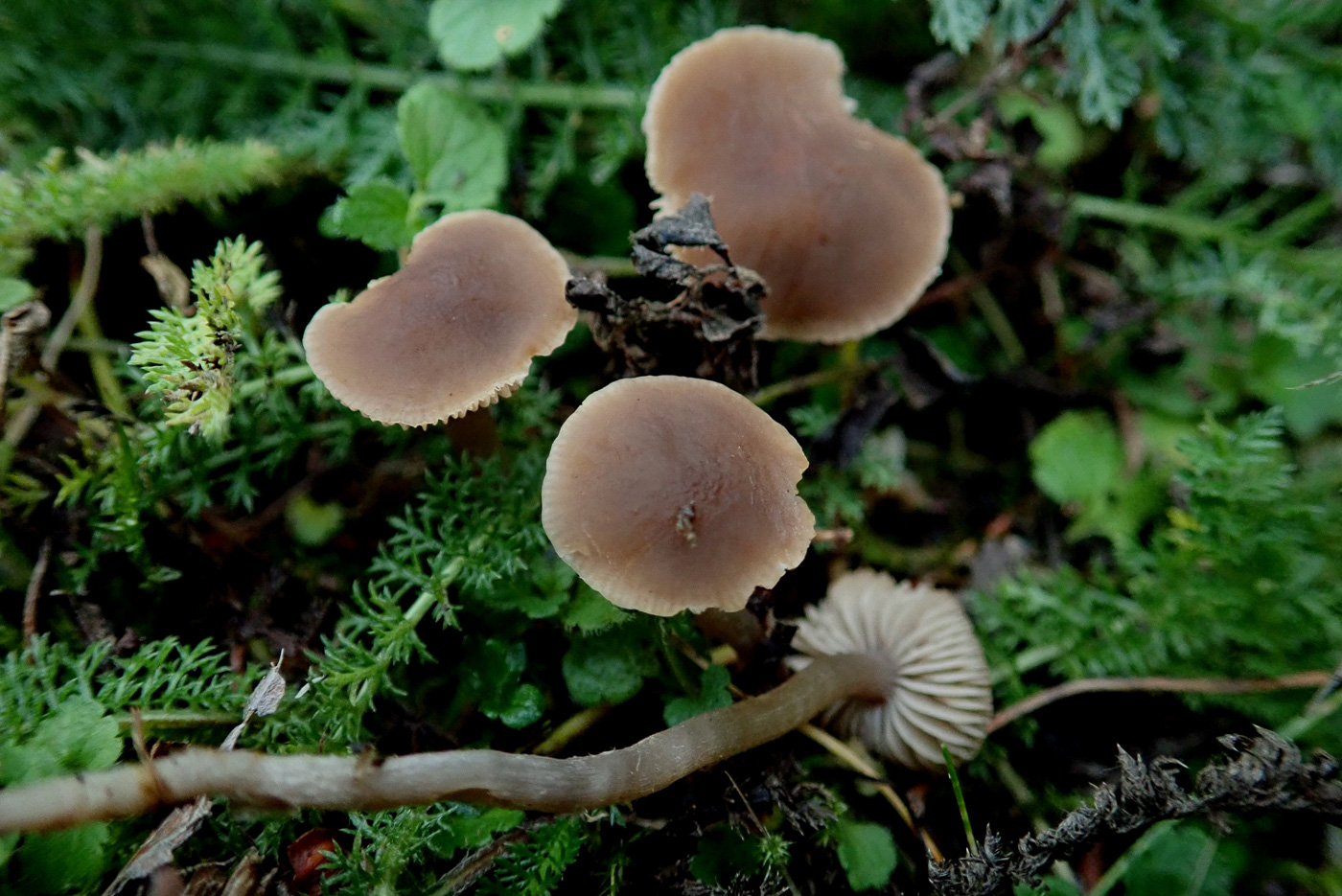 |
November 8th Dermoloma pseudocuneifolium (Dark Crazed Cap) 
In the churchyard in Princes Risborough Penny C. noticed some small unfamiliar dark brown flat caps (typical LBJs) amongst the gravestones. With them were also some much paler and slightly larger caps which looked to be a different species but this proved not to be the case - they were just very faded. On collection she noticed a familiar rancid to mealy smell reminding of Dermoloma cuneifolium (see photo dated Oct 07) but the jizz was different and the caps were clearly not grey nor rounded as in that species. At home she noticed that the spores were amyloid (turning blue in Melzers reagent) which led her via the key to D. pseudocuneifolium, a species apparently new to the county. Note in photo 1 the tiny dark cap just emerging beneath the far LH specimen, also the far RH cap in the process of fading. Photo 2 shows the unfaded dark caps.
|
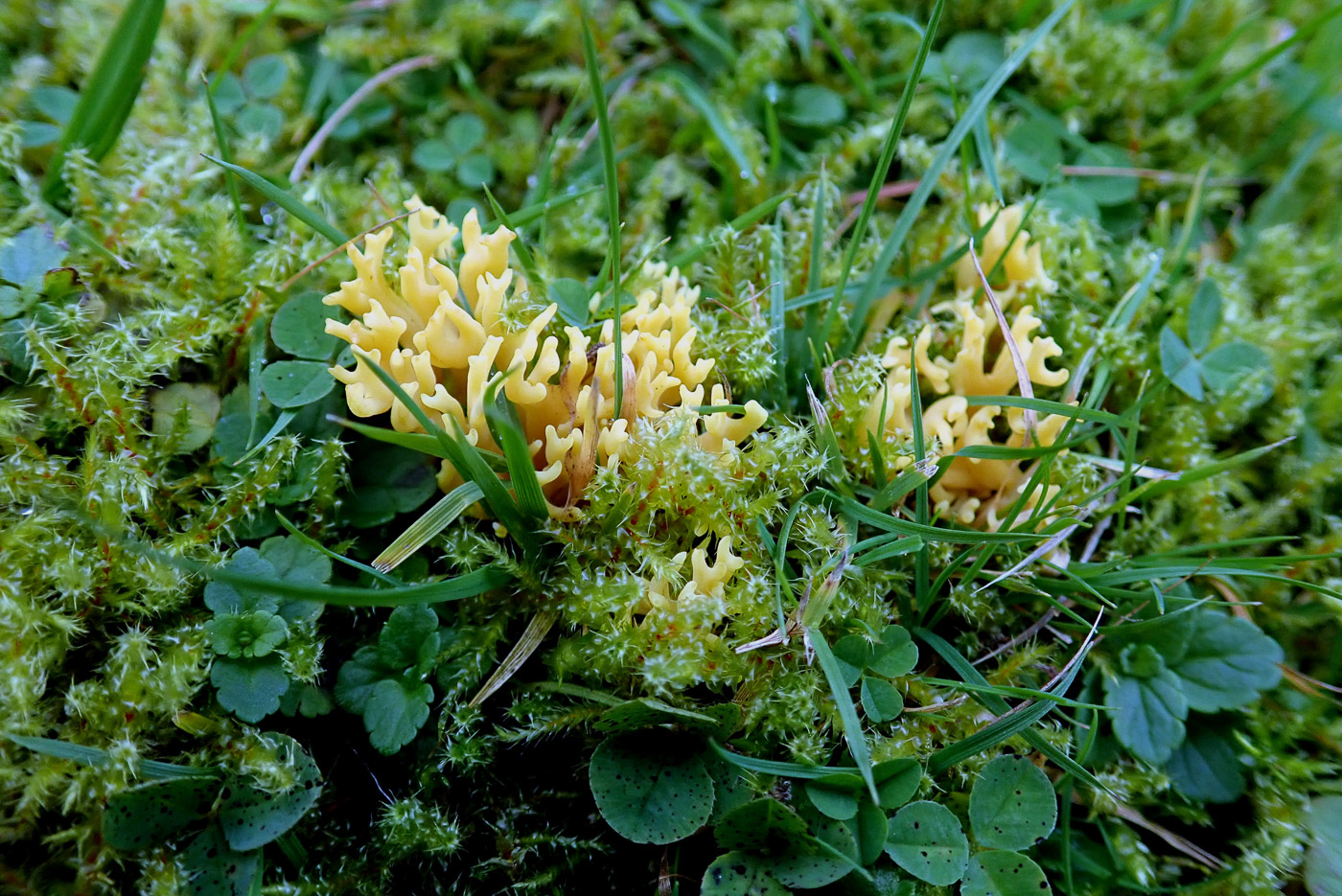
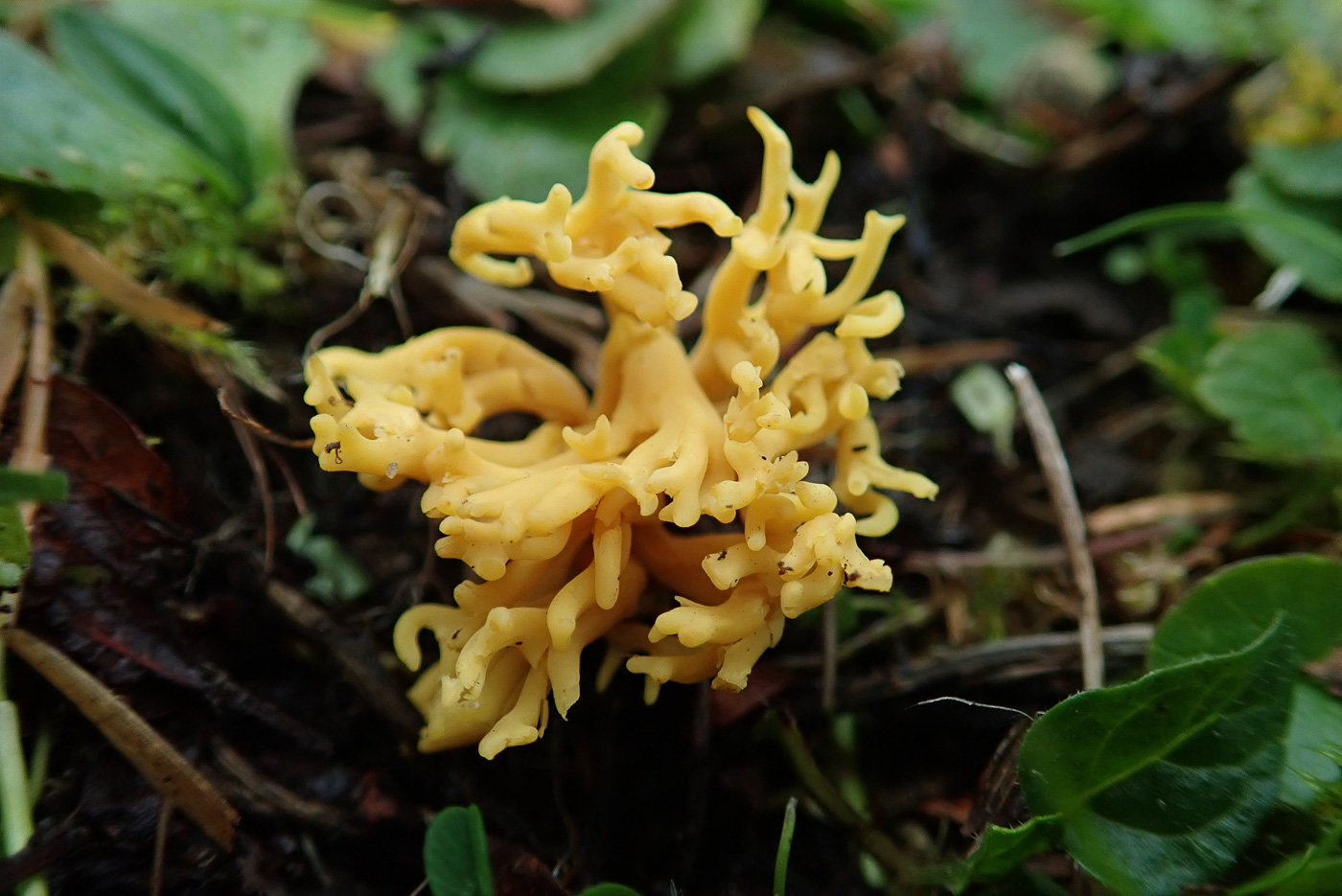 |
November 8th Clavulinopsis corniculata (Meadow Coral)
Penny C. had been surprised this common little grassland Coral had not turned up anywhere so far, then found it in good numbers just poking through the mossy grass in the churchyard at Princes Risborough today. This is a Clavulinopsis which is nameable in the field and clearly very different from the simple yellow clubs which have been much in evidence in recent weeks. It forms orange yellow tightly intertwining clusters, sometimes branching, sometimes not, each 'tendril' thinner than the simple clubs and each clump reaching 5 or 6 cms in height at most. Another clustering species of this genus to look out for in grassland is C. fusiformis, not likely to be confused with today’s species being taller (to 10 cms high) with thicker and brighter yellow clumps of single clubs.
|
November 7th 2020
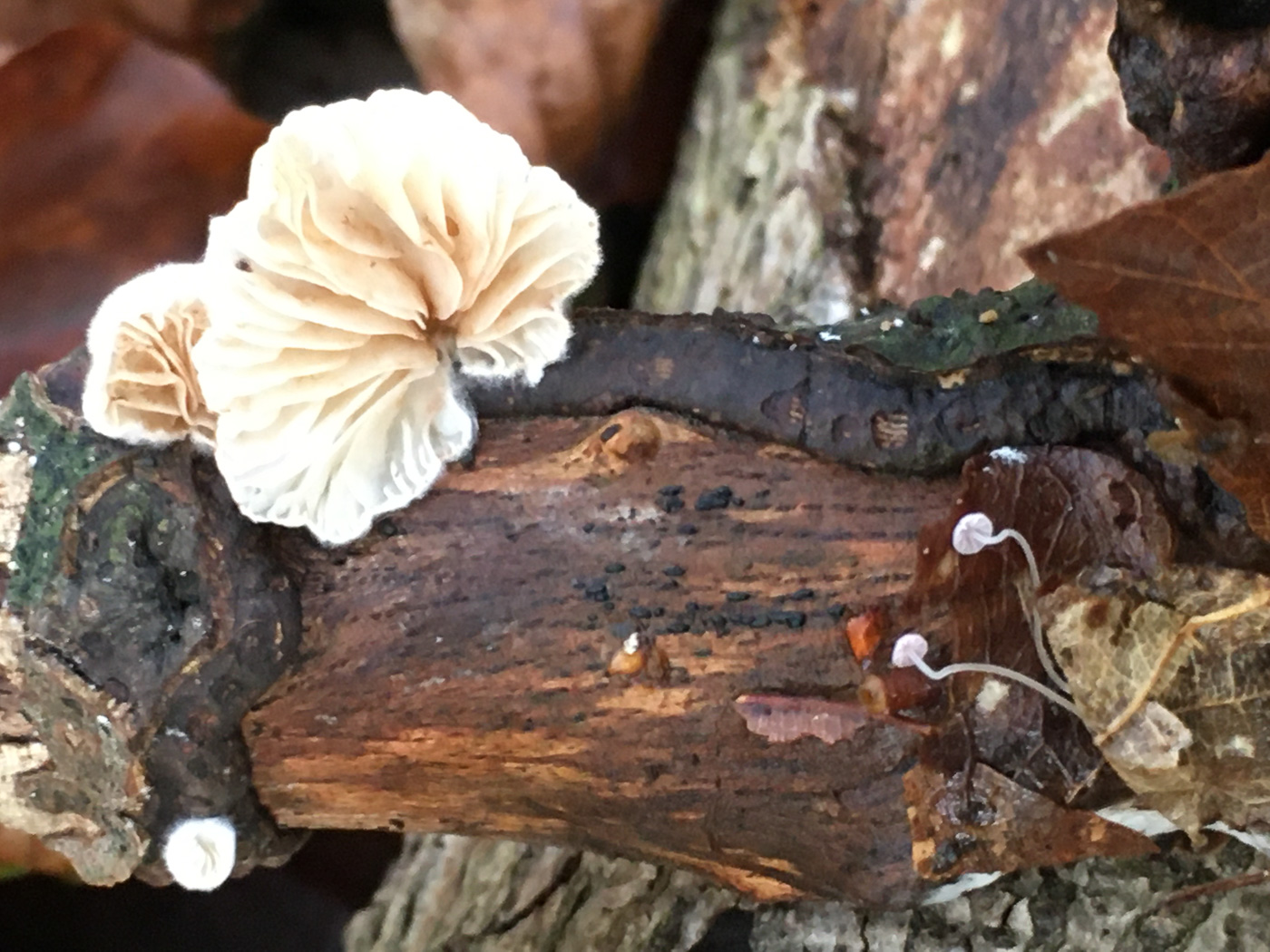
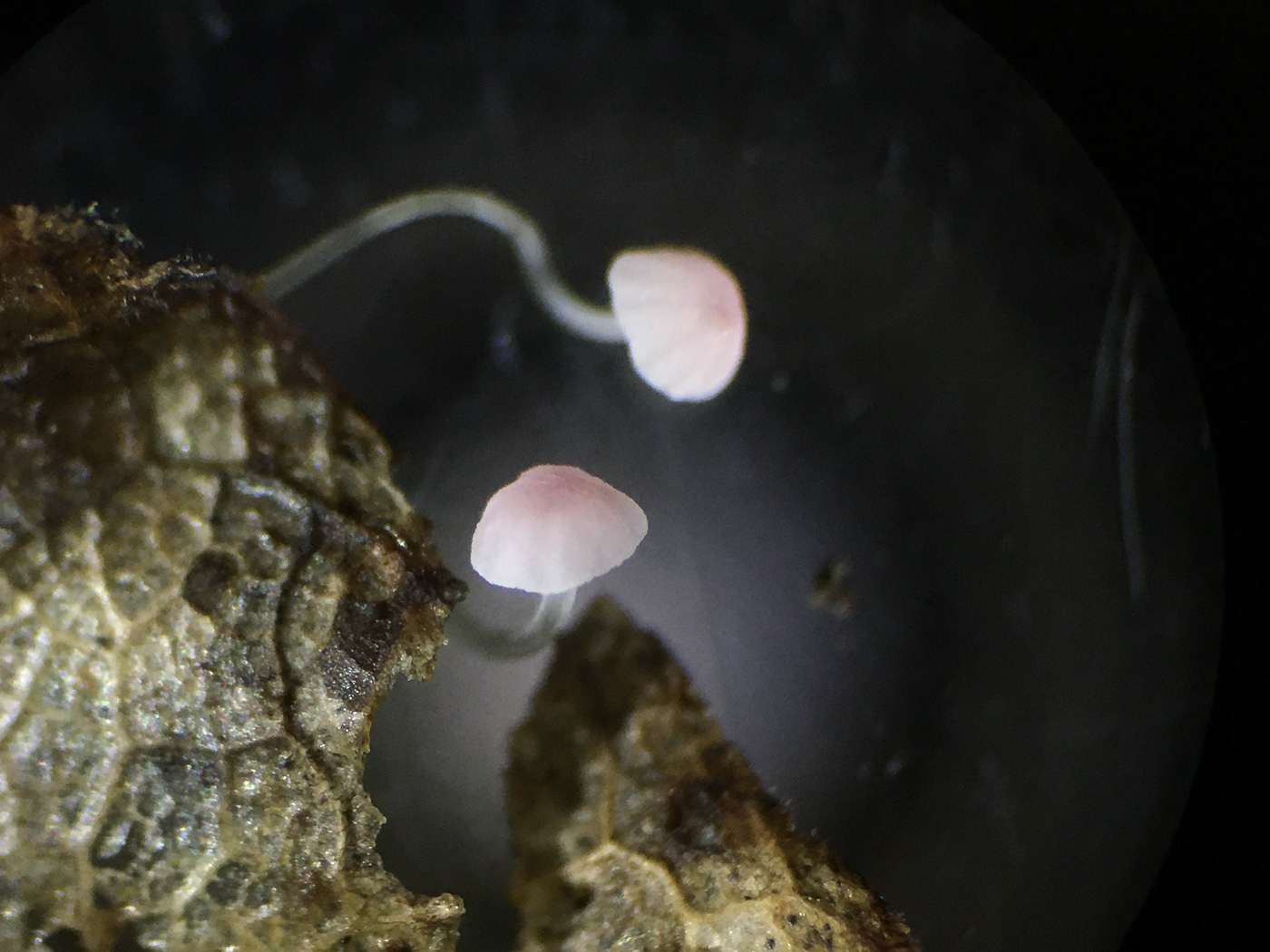
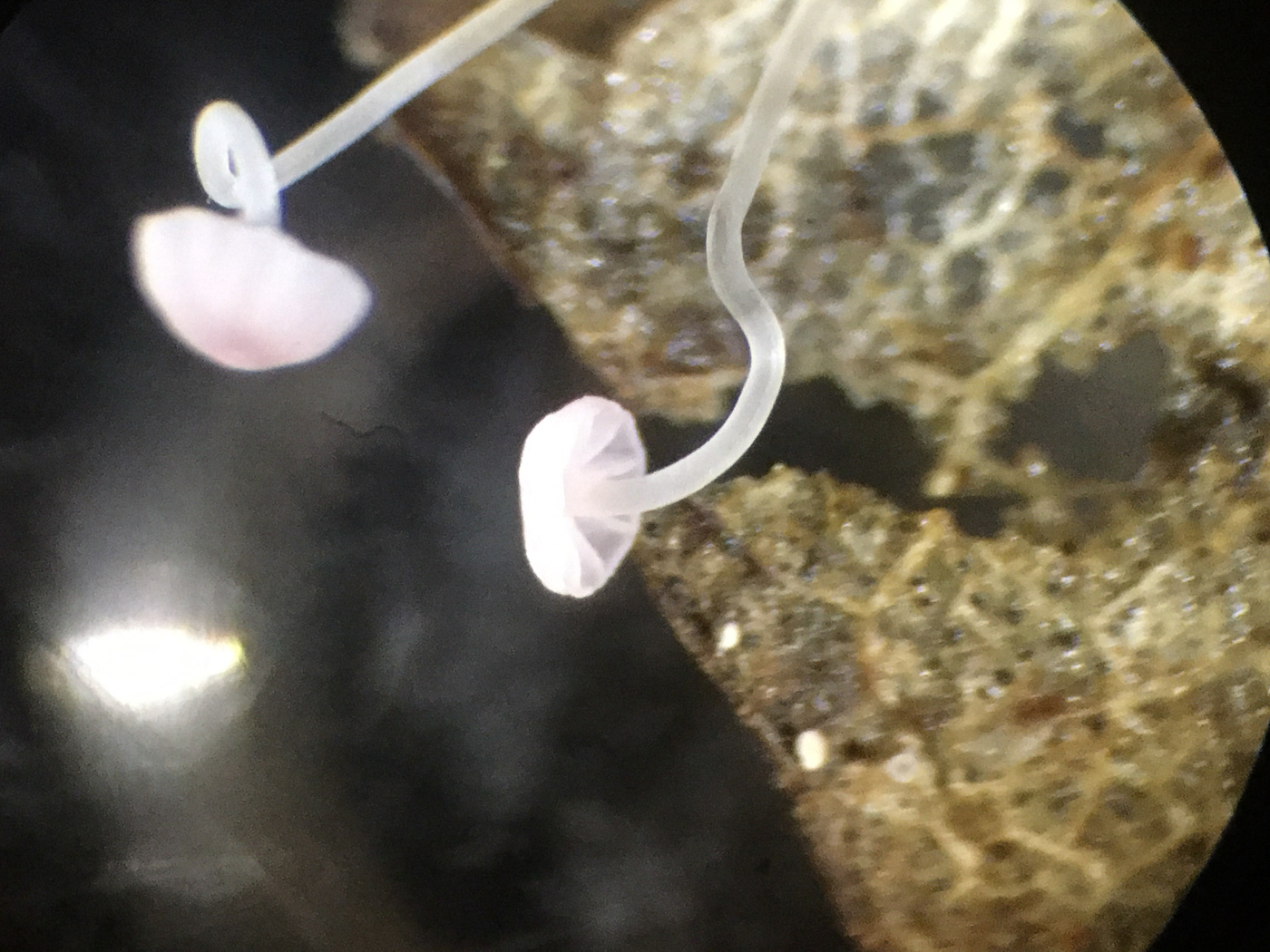 |
November 7th Mycena smithiana (a Bonnet with no common name)
This minuscule Bonnet was spotted in Burnham Beeches growing on an Oak leaf by Russell Ness. One of several very similar tiny Bonnets which never exceed 5 mms across - the enormous Crepidotus in photo 1, itself probably no more than 1 cm across, utterly dwarfs the two Mycena specimens on the right - the species is alone in using Oak leaves as substrate and also has a distinct pink glint. These two field characters (if clearly apparent as they are here) together with the tiny size are sufficient to name it in the field. If not, however, then work with a scope is necessary. We have a good handful of county records but the species is never common and obviously often goes unnoticed, so a nice find today and not recorded here since 2004.
|
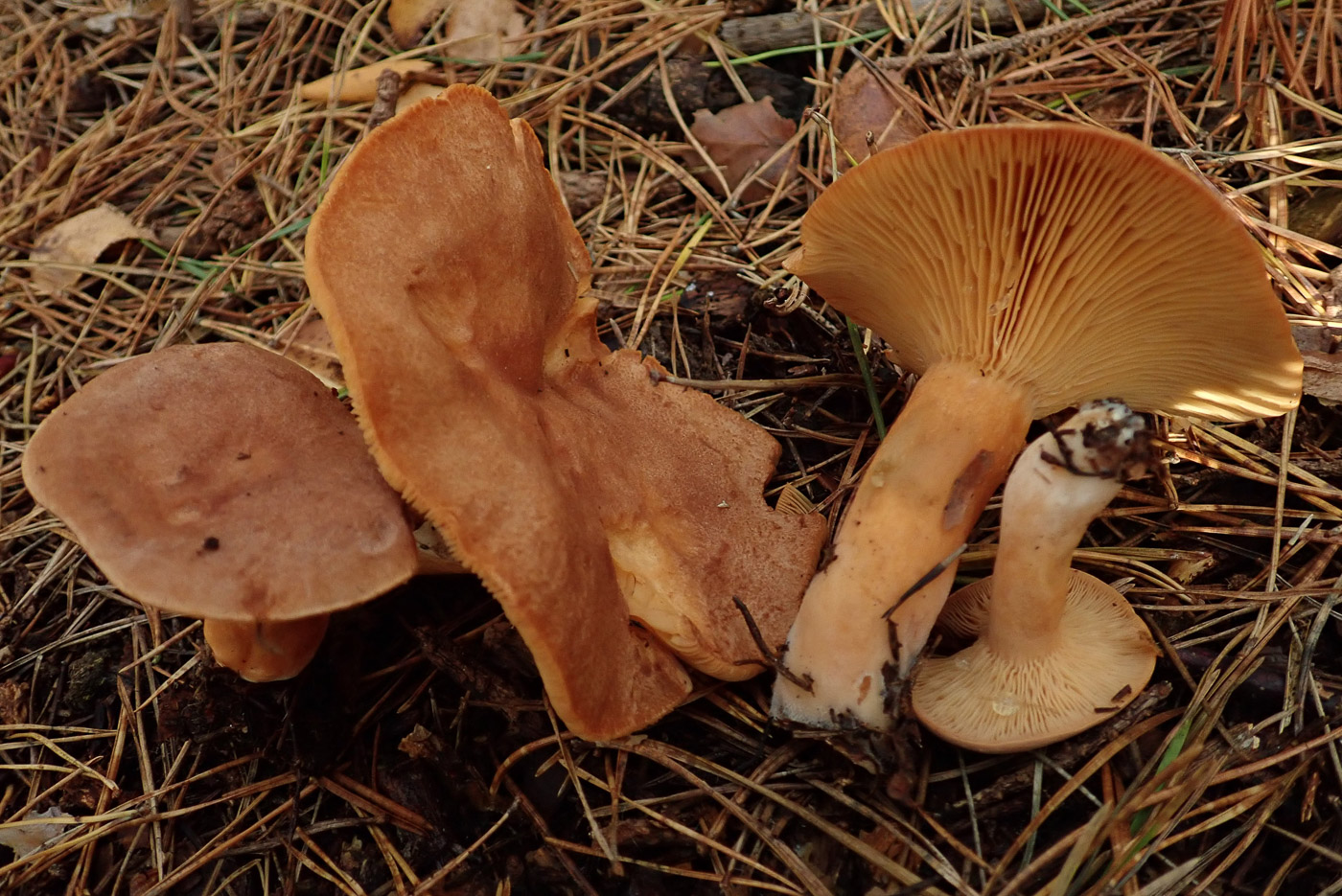
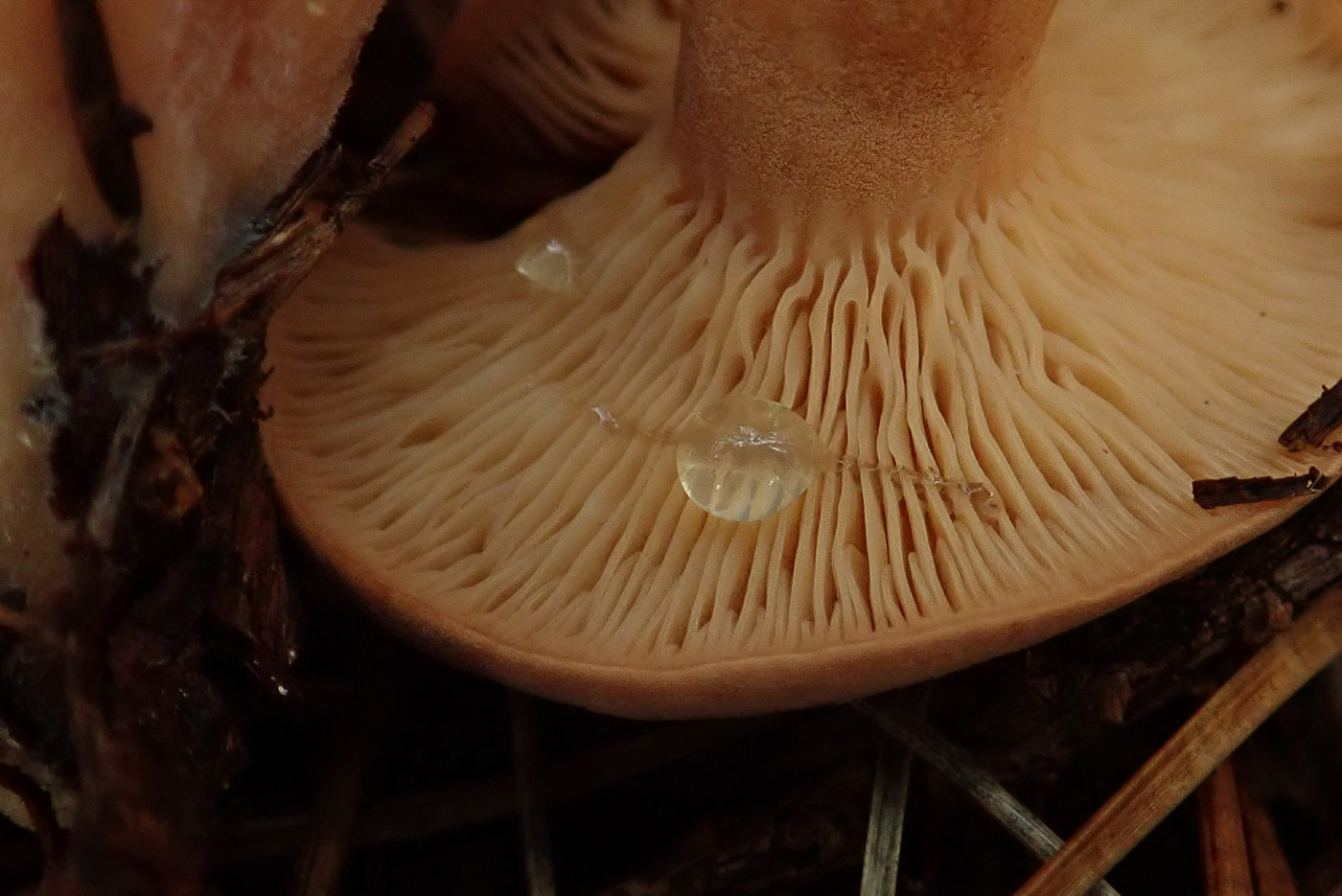 |
November 7th Lactarius helvus (Fenugreek Milkcap)
We have photos of very young material of this unusual Milkcap dated Sept 25, so when it showed up again in large quantities under Pine at Stoke Common Penny C. took the opportunity to show how the species looks when mature. In fact she was very unsure what it was to start with because some caps were over 10 cms across, they completely lacked the diagnostic smell of curry spice and most specimens failed to produce any milk (though in this species the 'milk' is entirely colourless which adds to the confusion!). Knowing that the species is always very common here, however, she persevered and eventually found a specimen which gave the game away and confirmed her identification. No milk is visible in photo 1 but clearly visible in photo 2. Once mushrooms are hit by frost one of the first characters to be affected is their smell which can either change or disappear - something worth remembering now we're into that time of year.
|
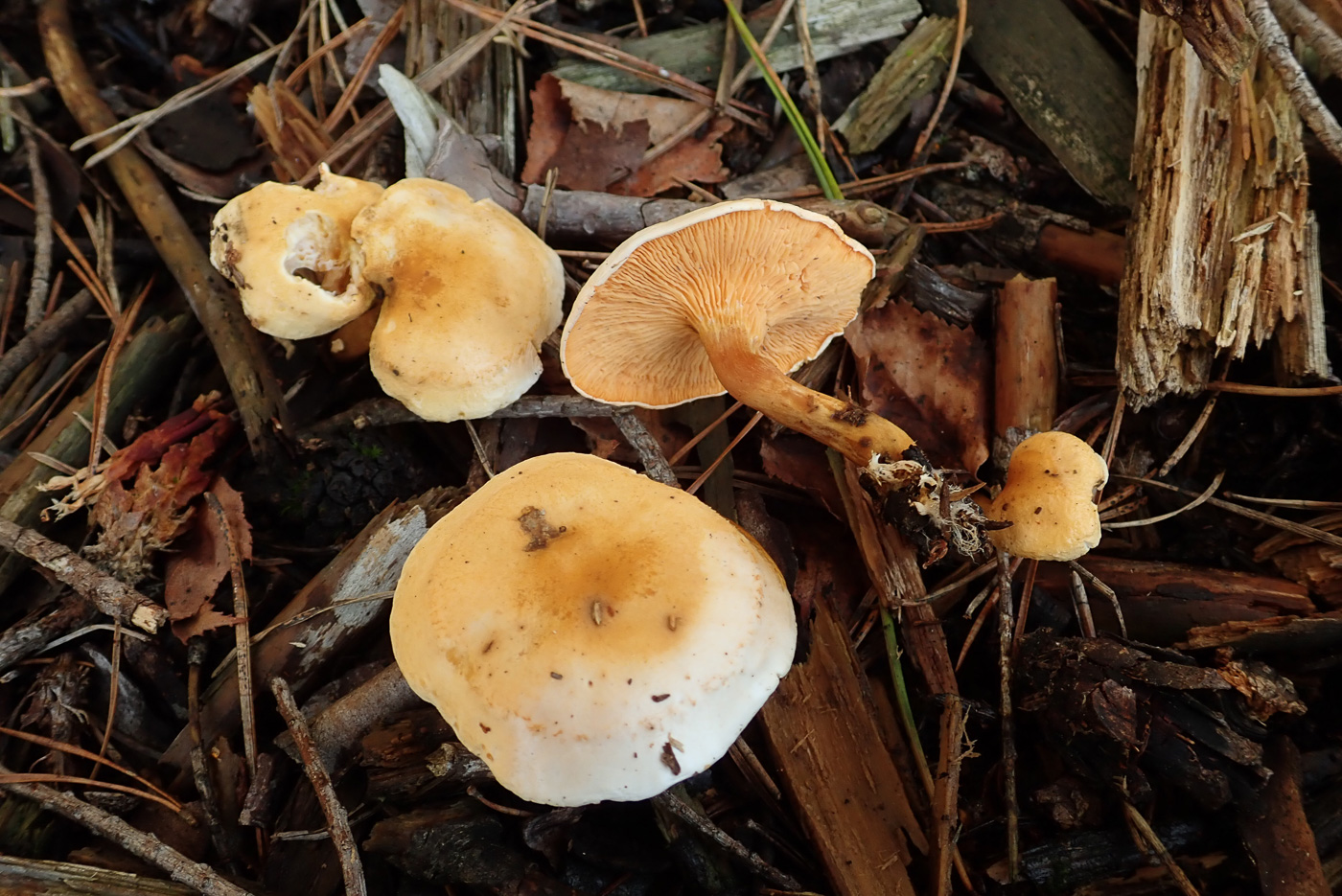
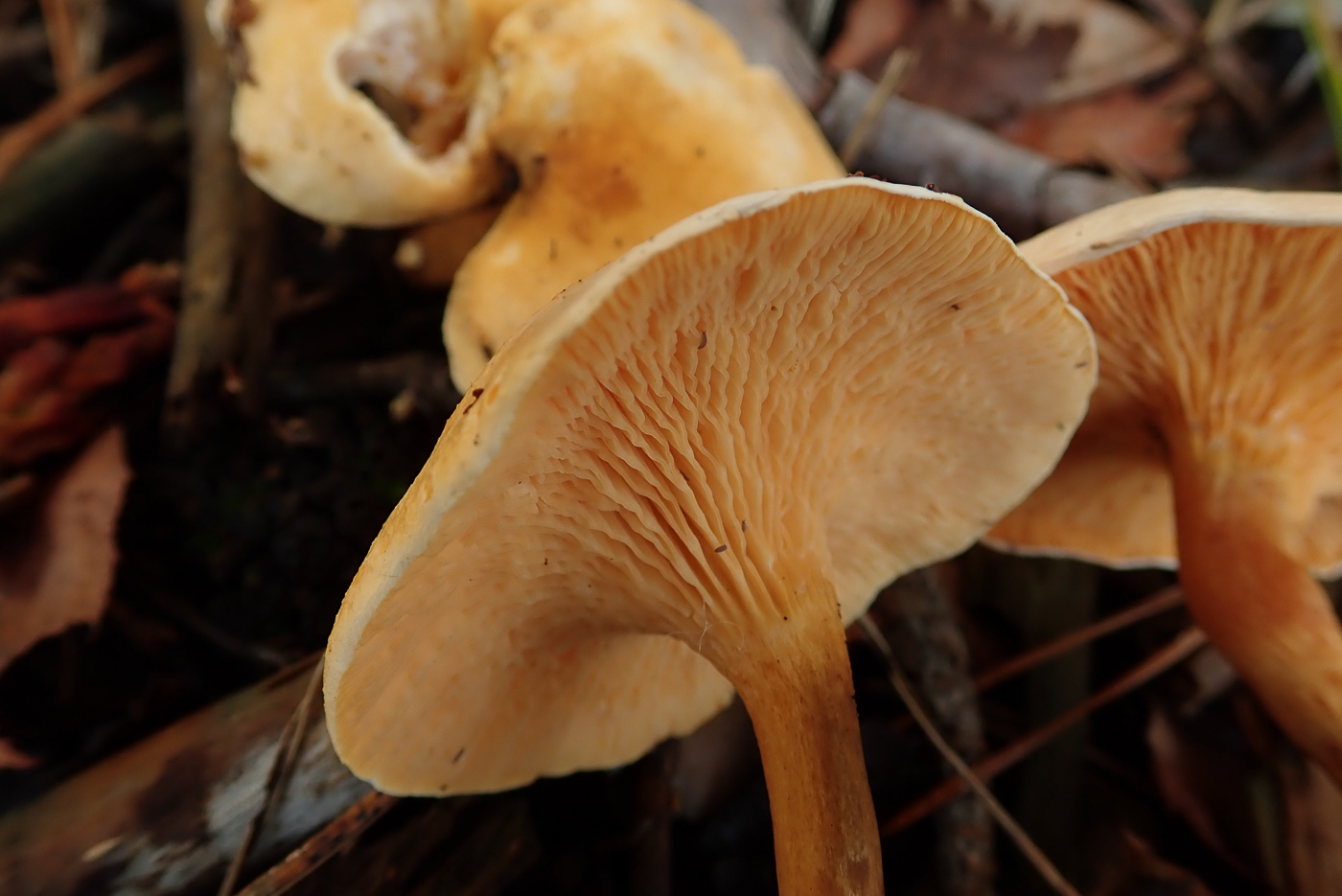 |
November 7th Hygrophoropsis aurantiaca (False Chanterelle)
We have rather poor photos of this dated Oct 27, so Penny C. took the opportunity to share hopefully better images when it showed up again today under Pine at Stoke Common. Though normally very common it seems to have been scarce this autumn. This is a somewhat pale collection but the rather wrinkled decurrent gills are clear, a good diagnostic feature.
|
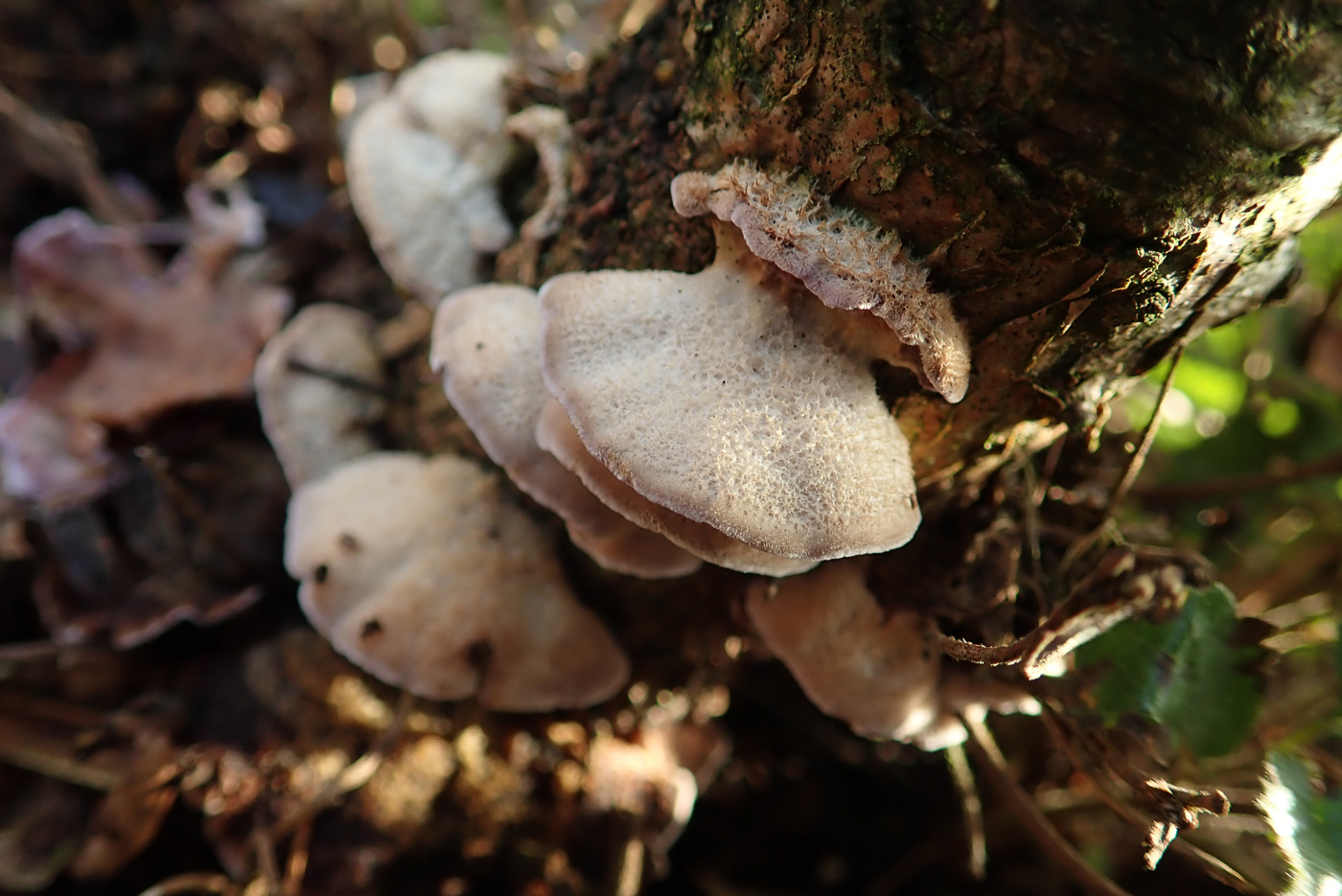
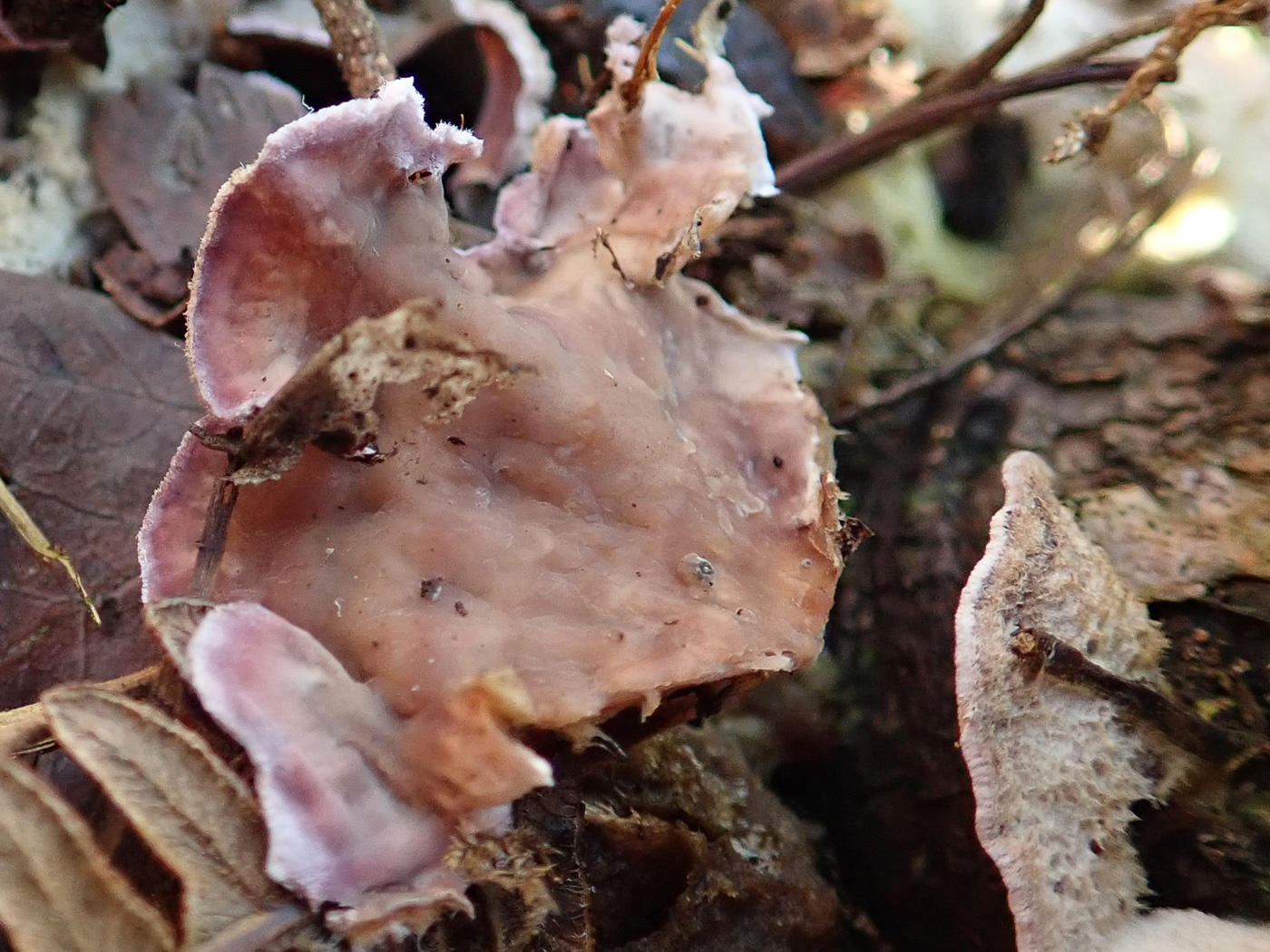 |
November 7th Chondrostereum purpureum (Silverleaf Fungus)
Though we have photos of this species from the previous day in Burnham Beeches it was of undeveloped specimens, so as it turned up today at Stoke Common - again on a Birch stump - Penny C. thought it would be useful to include adjacent to the similar Trichaptum abietinum for comparison. Note on photo 2 the smooth violet underside here compared to the clearly pored violet underside of the Trichaptum in photo 2 for that species.
|
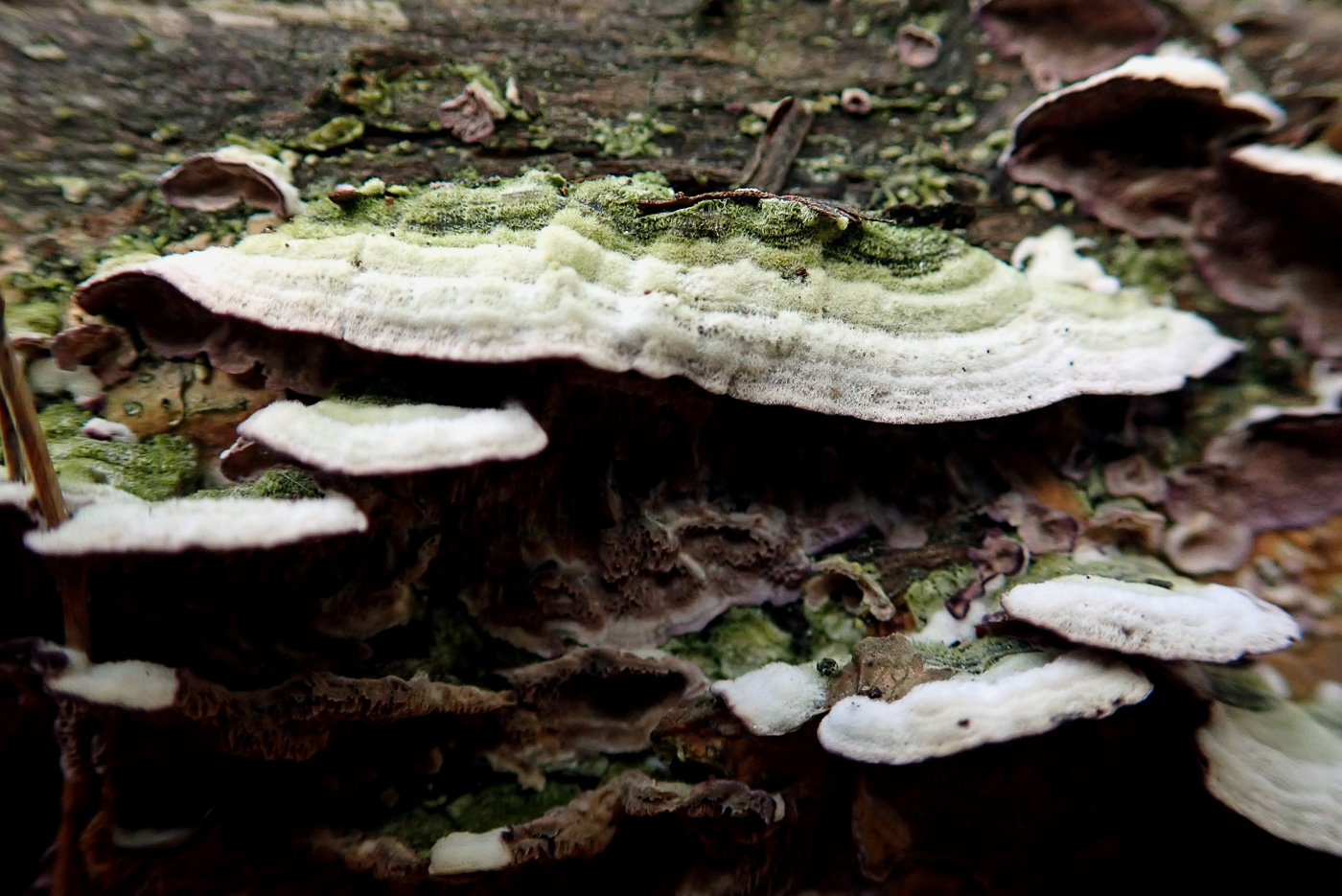
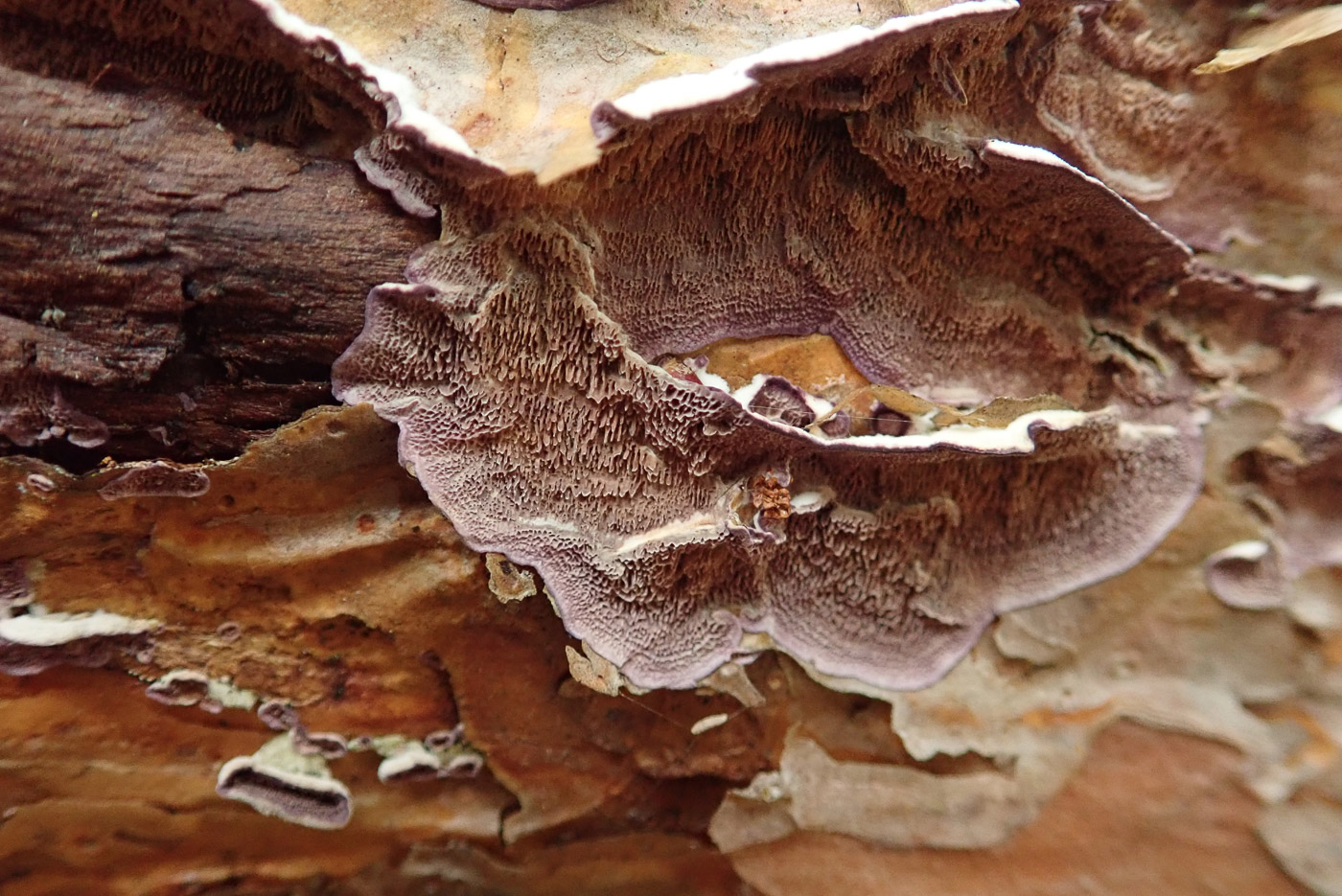 |
November 7th Trichaptum abietinum (Purplepore Bracket)
On the quantities of felled Pine at Stoke Common Penny C. found this species everywhere. It forms large colonies of small whitish hairy brackets (only on fallen conifer) and the underside has violet purple pores, hence its common name. Do not confuse with the somewhat similar Chondrostereum purpureum (see photos and notes dated Nov 06, also today as well) which from above is almost identical but the underside, though purple, is smooth and not pored as in today's species. It occurs on deciduous wood, commonly Birch, never conifer.
|
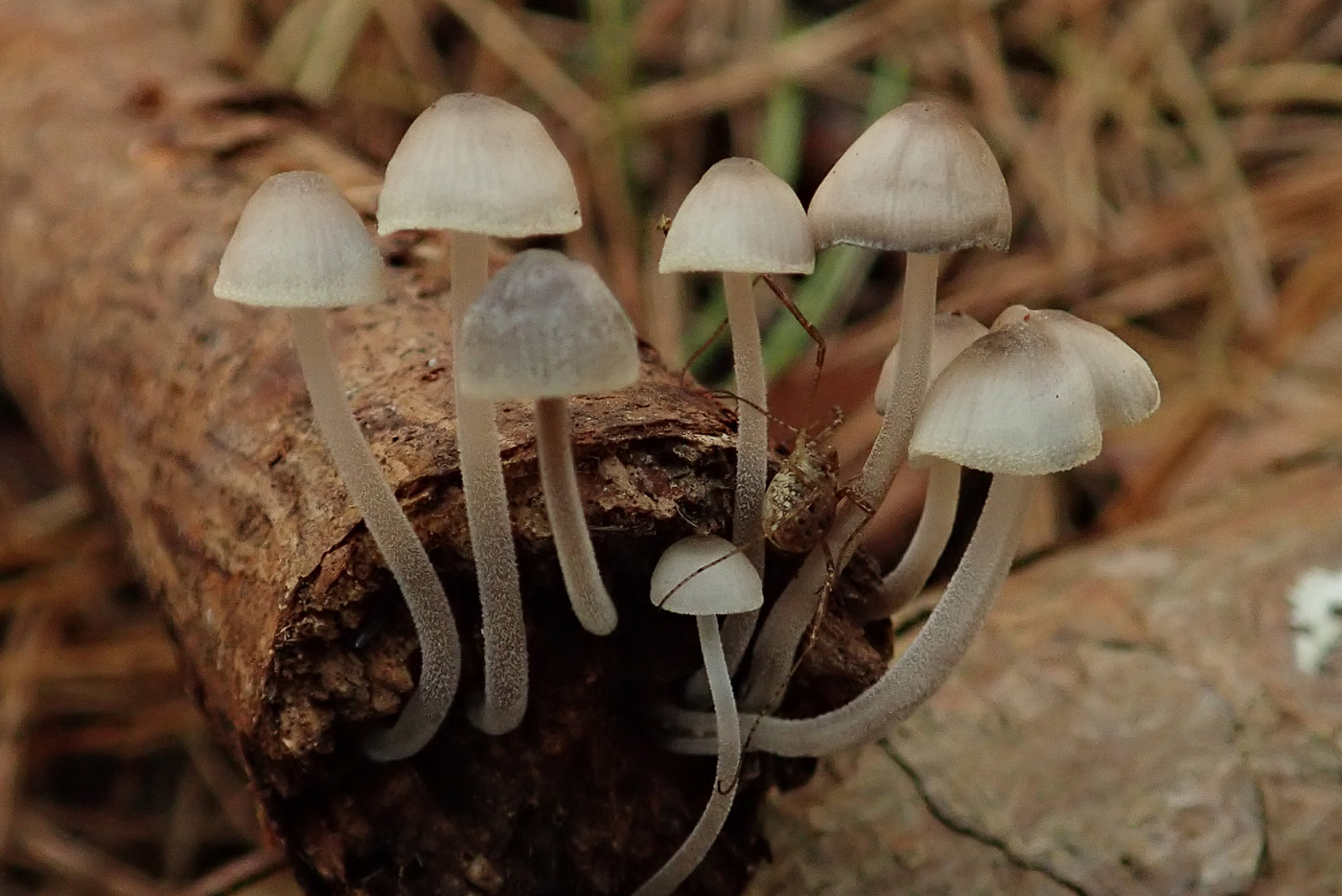
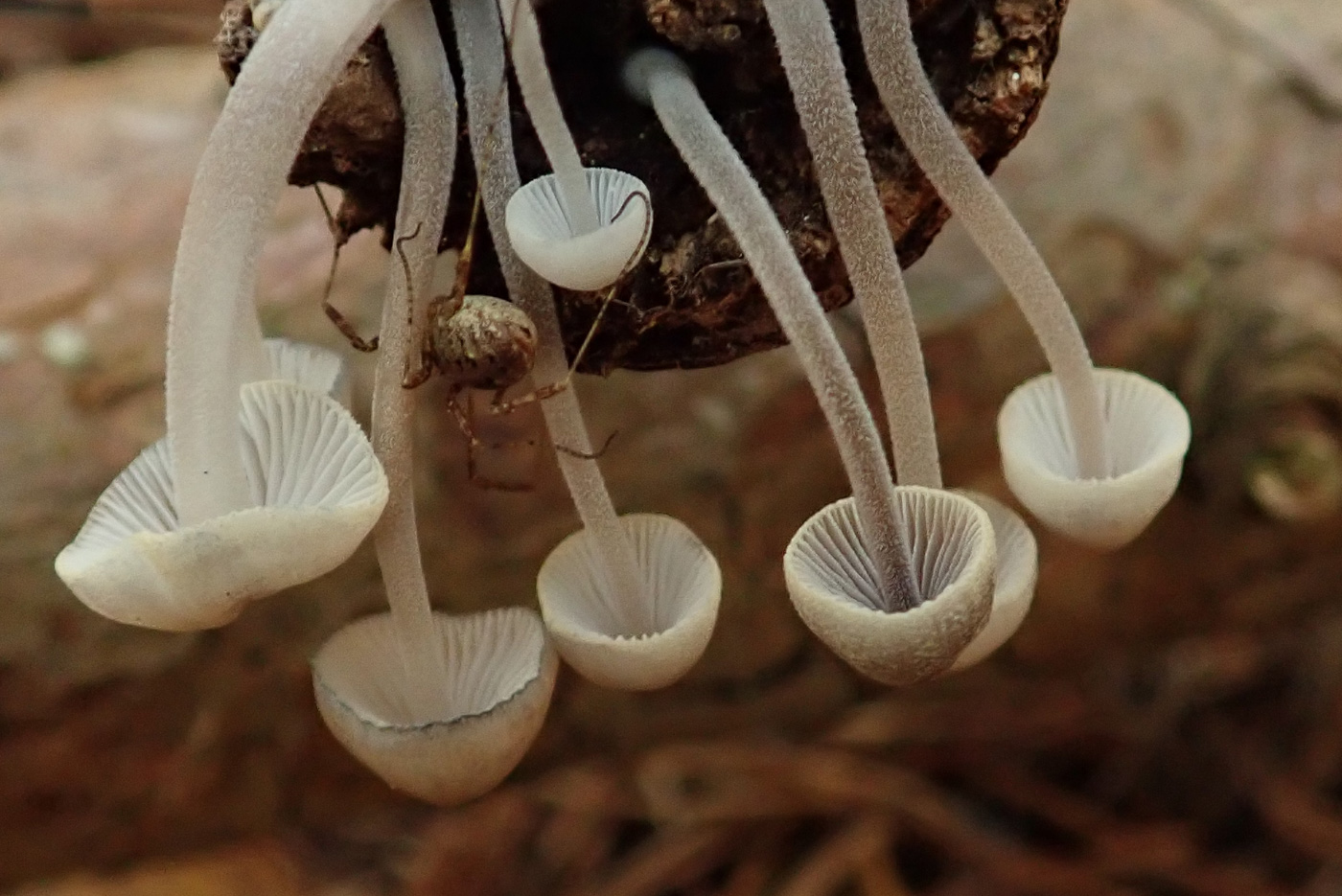
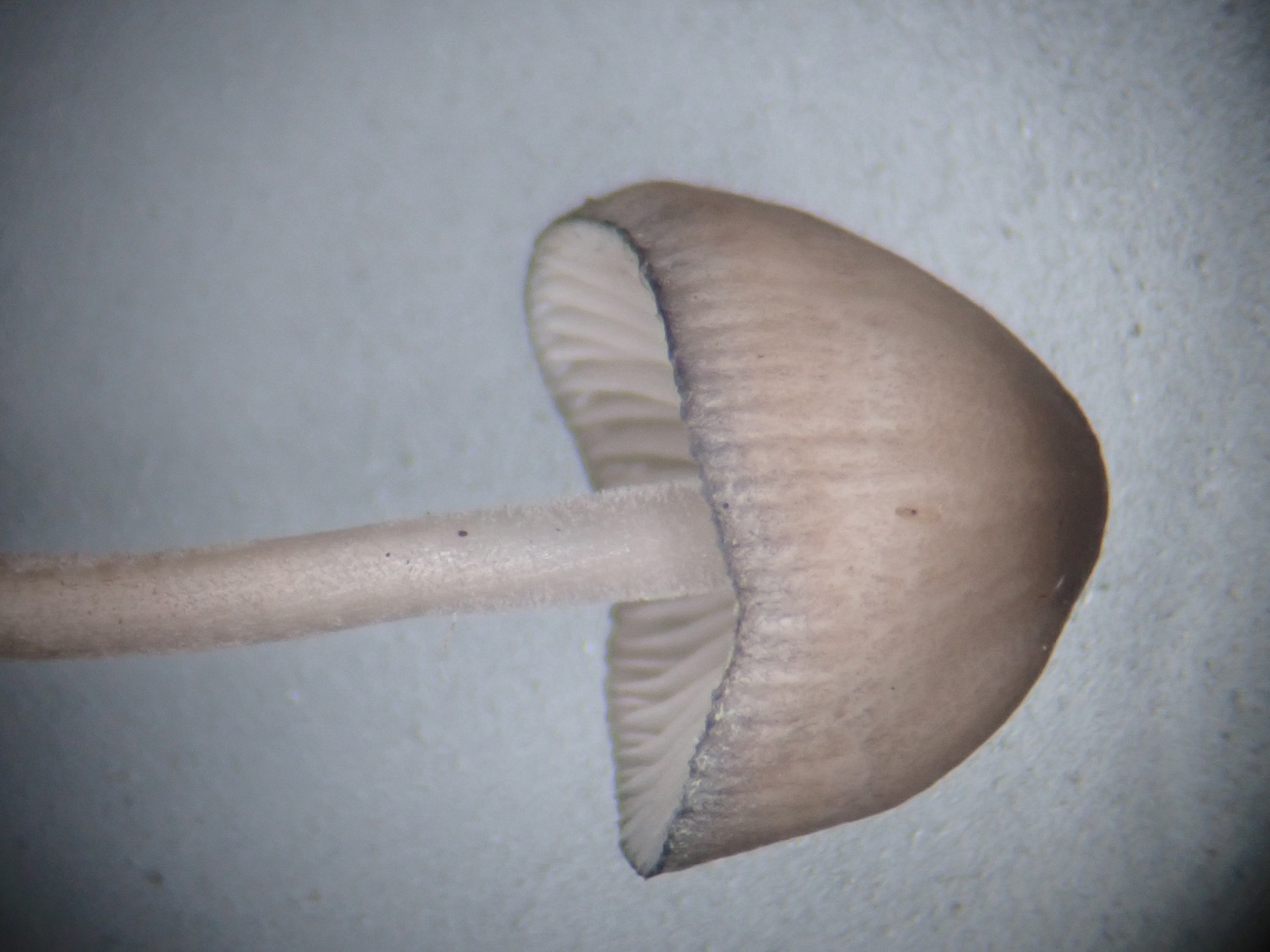 |
November 7th Mycena amicta (Coldfoot Bonnet) 
Penny C. found this attractive little collection growing out of the end of a Pine stick in Stoke Common. Caps were just 5 mm across and she knew it could be one of several species but thought she could see signs of dark blue on the cap margin of one fruit body which suggested to her that it might be M. amicta. This is an occasional species though not really rare but our records showed it has only been found here once before. It occurs mainly on conifer wood or woody debris and looks much like many other smallish Bonnets but usually at least one specimen has signs of dark blue, either on the cap somewhere or at the stem base (hence its common name). At home Penny confirmed the identification with a scope, then attempted to show the dark blue cap margin under the stereo (photo 3).
|
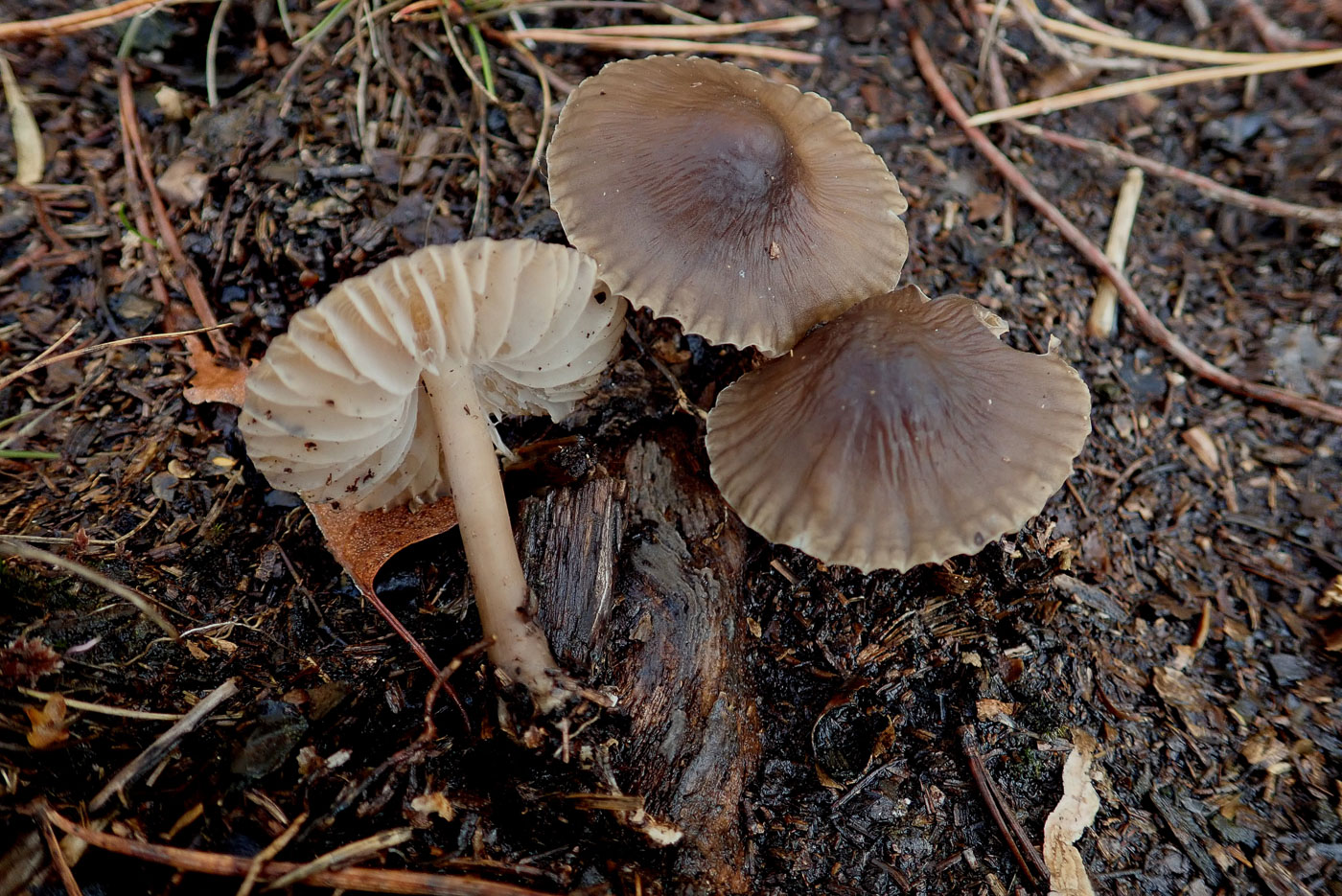 |
November 7th Mycena megaspora (Rooting Bonnet) 
In the same open heathland area at Stoke Common as Penny C.'s two dung species were found was a medium sized dark capped Bonnet growing on the very waterlogged ground. Knowing the Common well, she knew this might well be the rare Mycena megaspora having recorded it here before. A species of acid heathland and only known in the county from this site and nearby Burnham Beeches (just three records in all), it is basically a dark brown capped smaller M. galericulata having the same cross ribs between the gills (use a handlens to see this) and also deeply rooting though not onto fallen wood as in that species. Microscopically similar too, it does have particularly large spores, hence the Latin species name.
|
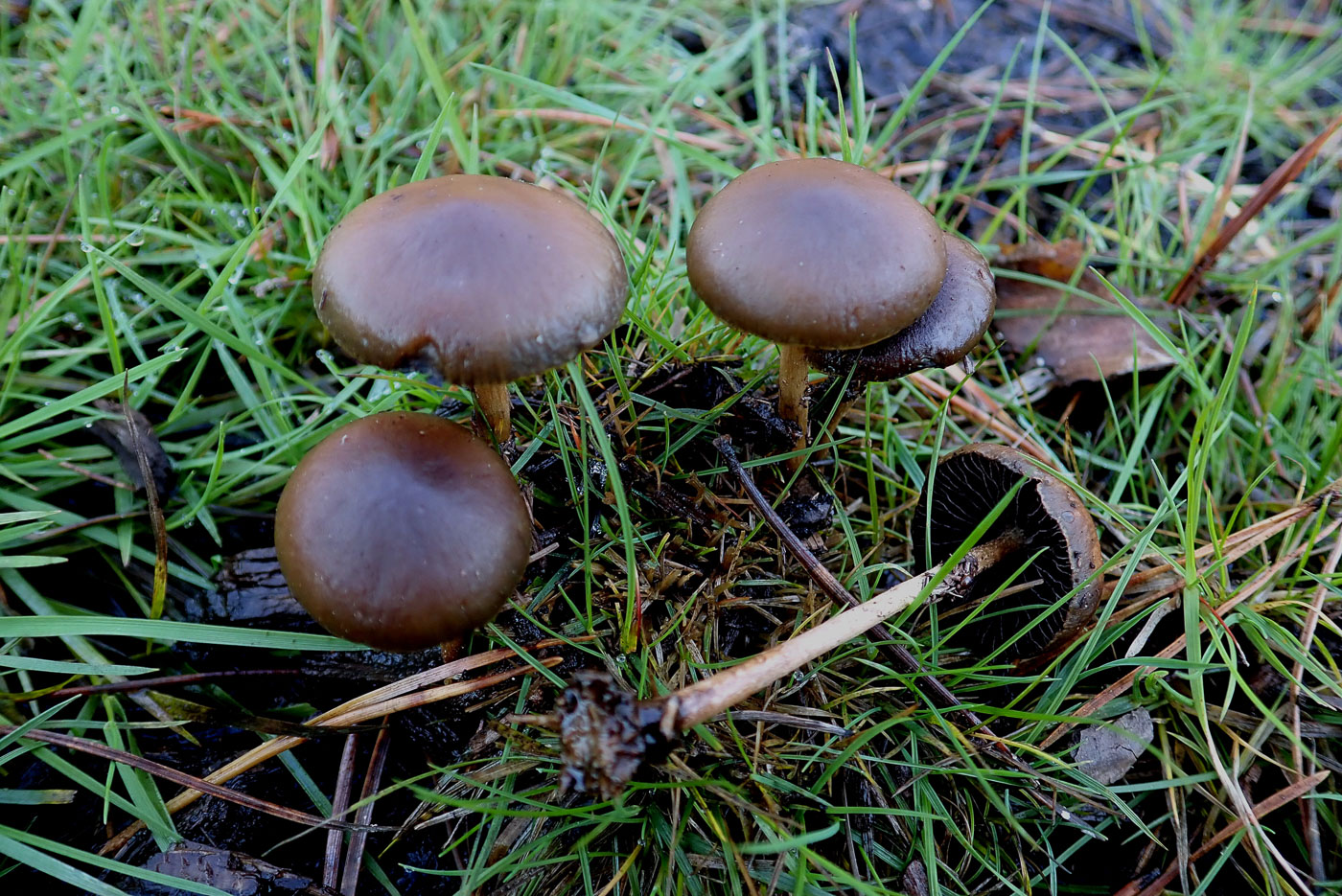
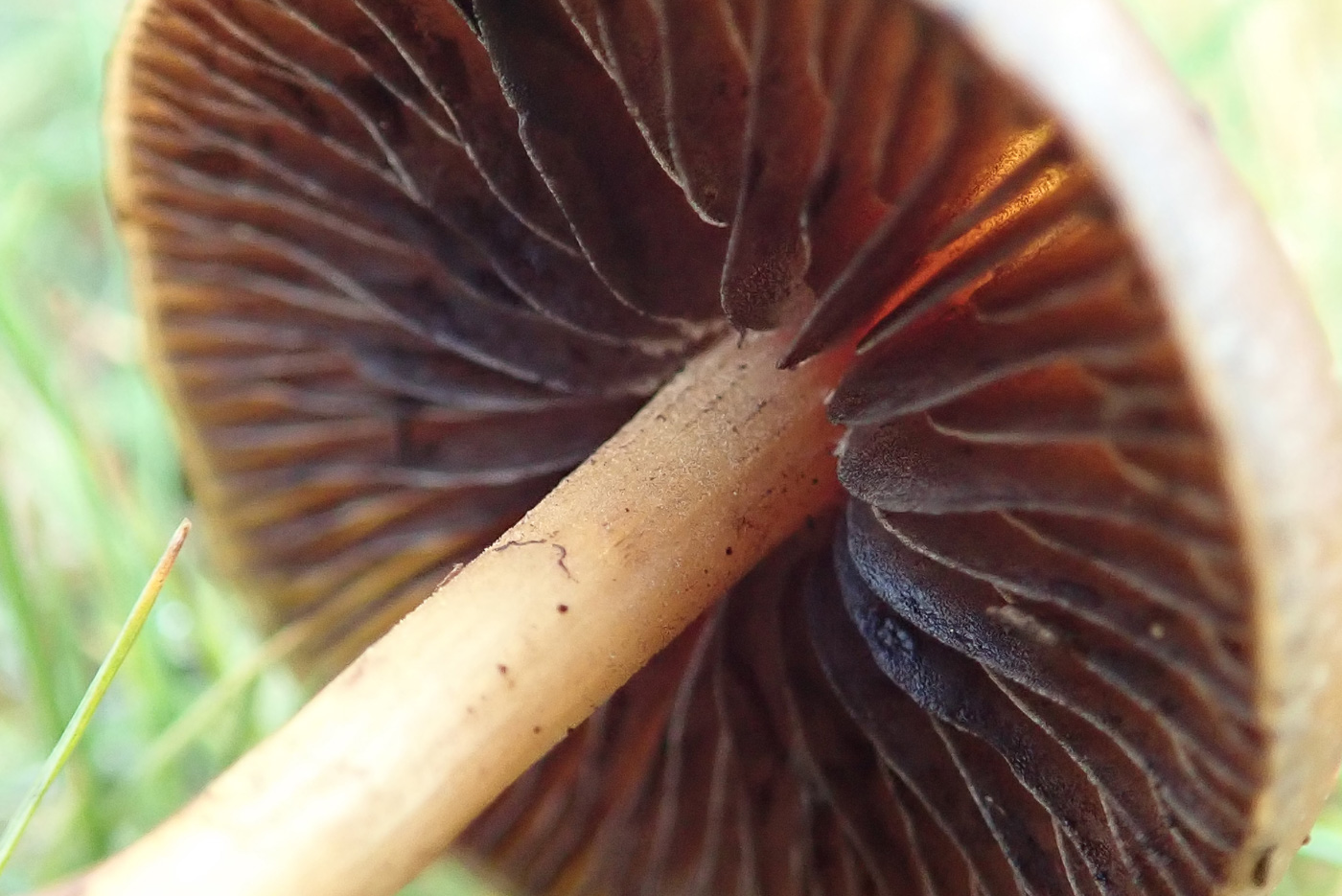 |
November 7th Panaeolus cinctulus (Banded Mottlegill) 
On an old cowpat in Stoke Common Penny C. found this cluster of a genus new to our list. Mottlegills have what it says on the tin: they have brown dry small to medium smooth caps, black spores and very dark gills which are unevenly mottled with black patches - best seen with a handlens but visible here in photo 2. Some species have a stem ring, some don't or lose it early on - basically another genus of LBJs! They are species of grassland, on soil or dung according to species and today's collection had flattish shiny caps about 2.5 cms across and needed a scope to determine to species.
|
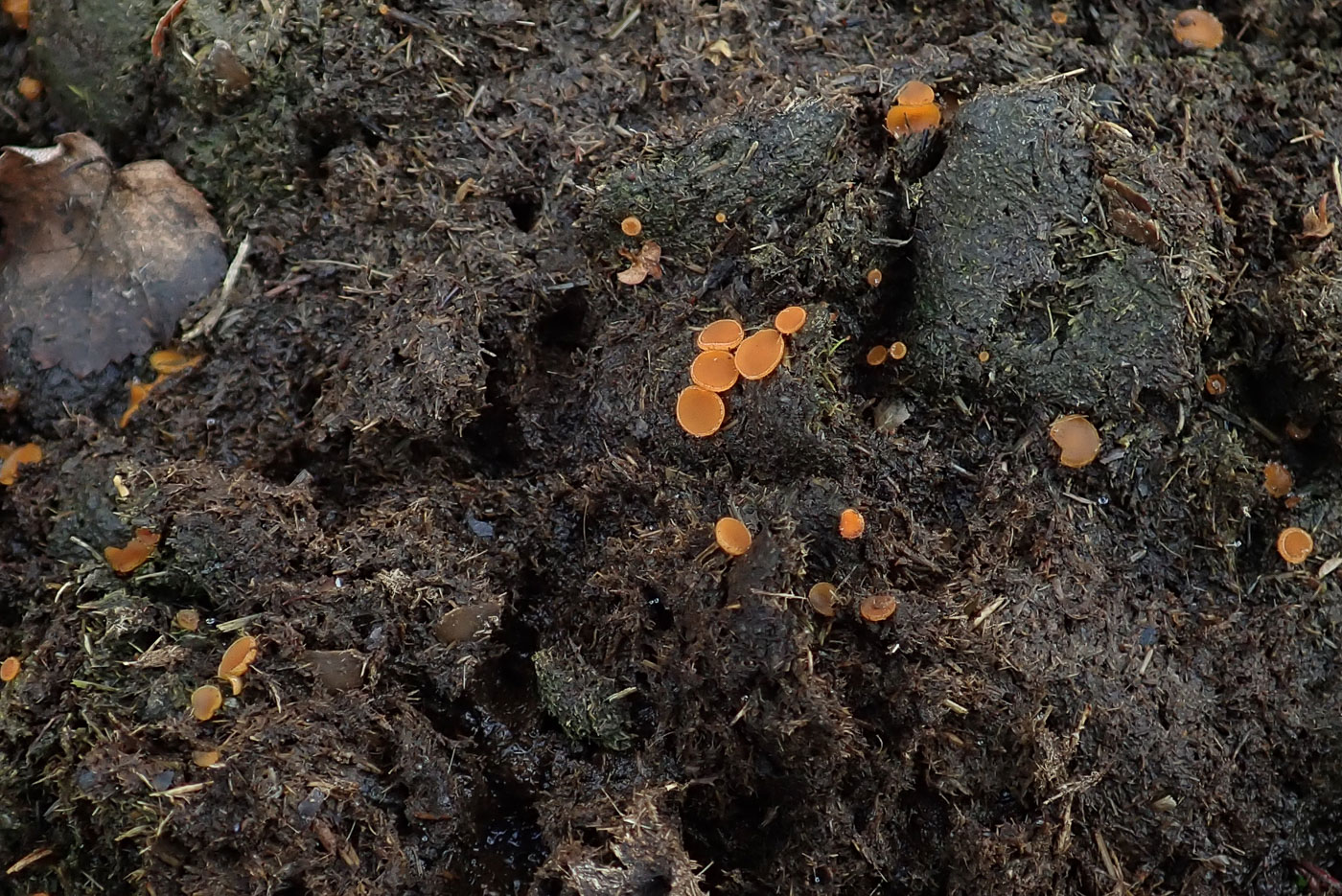
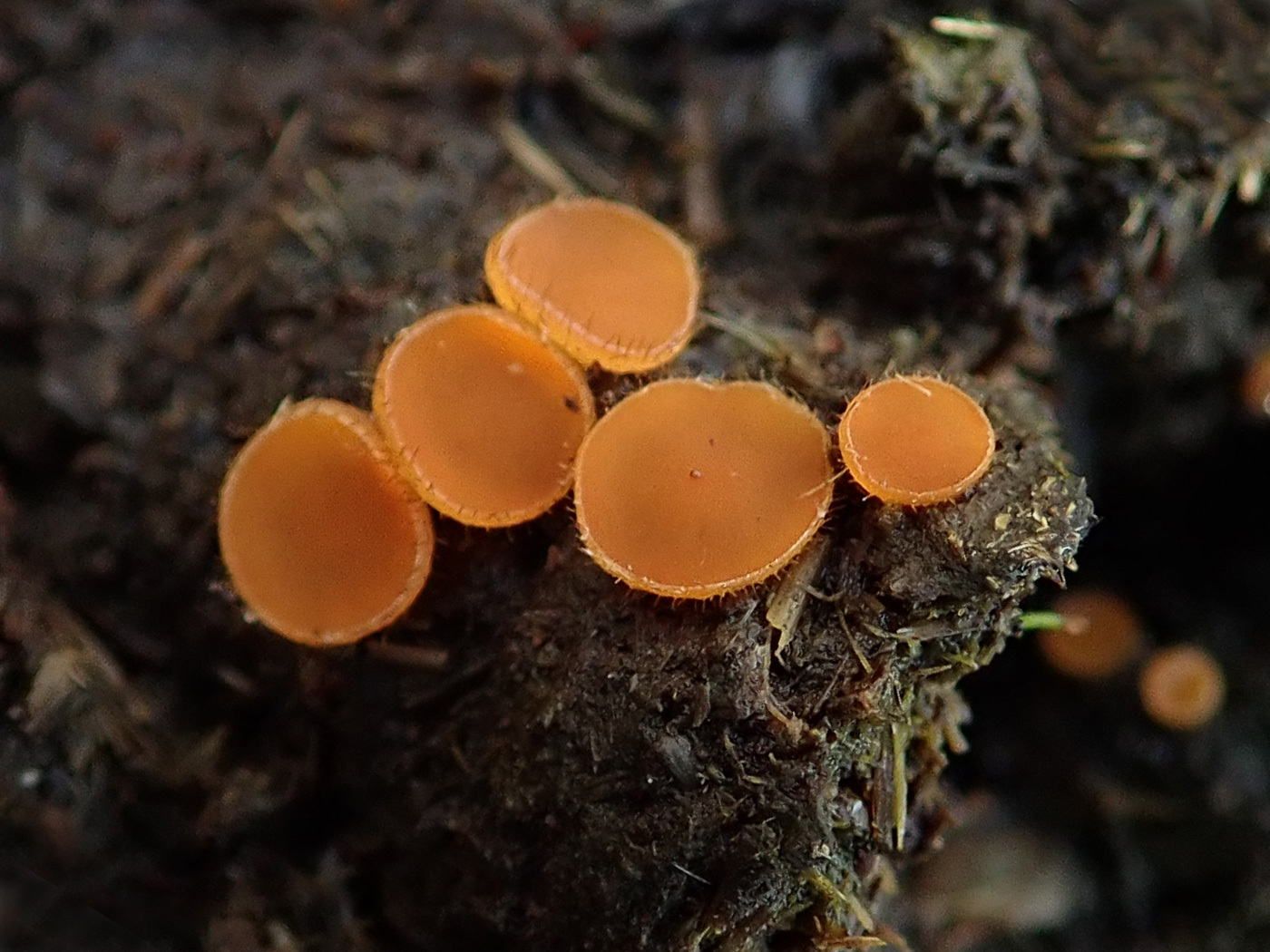 |
November 7th Cheilymenia fimicola ( (an Ascomycete with no common name) 
Penny C. noticed these bright orange little discs on a cowpat in Stoke Common. There are quite a few similar small discomycetes which inhabit dung so a scope is nearly always needed for identification. This species is not unlike a Scutellinia (Eyelash) and has fine brown hairs around the perimeter, visible in photo 2. They are, however, far less densely packed and paler than in Scutellinia which in any case does not occur on dung. Spore size, also the length of the spore casing (the ascus) and the length and shape of the hairs were diagnostic for this particular species.
|
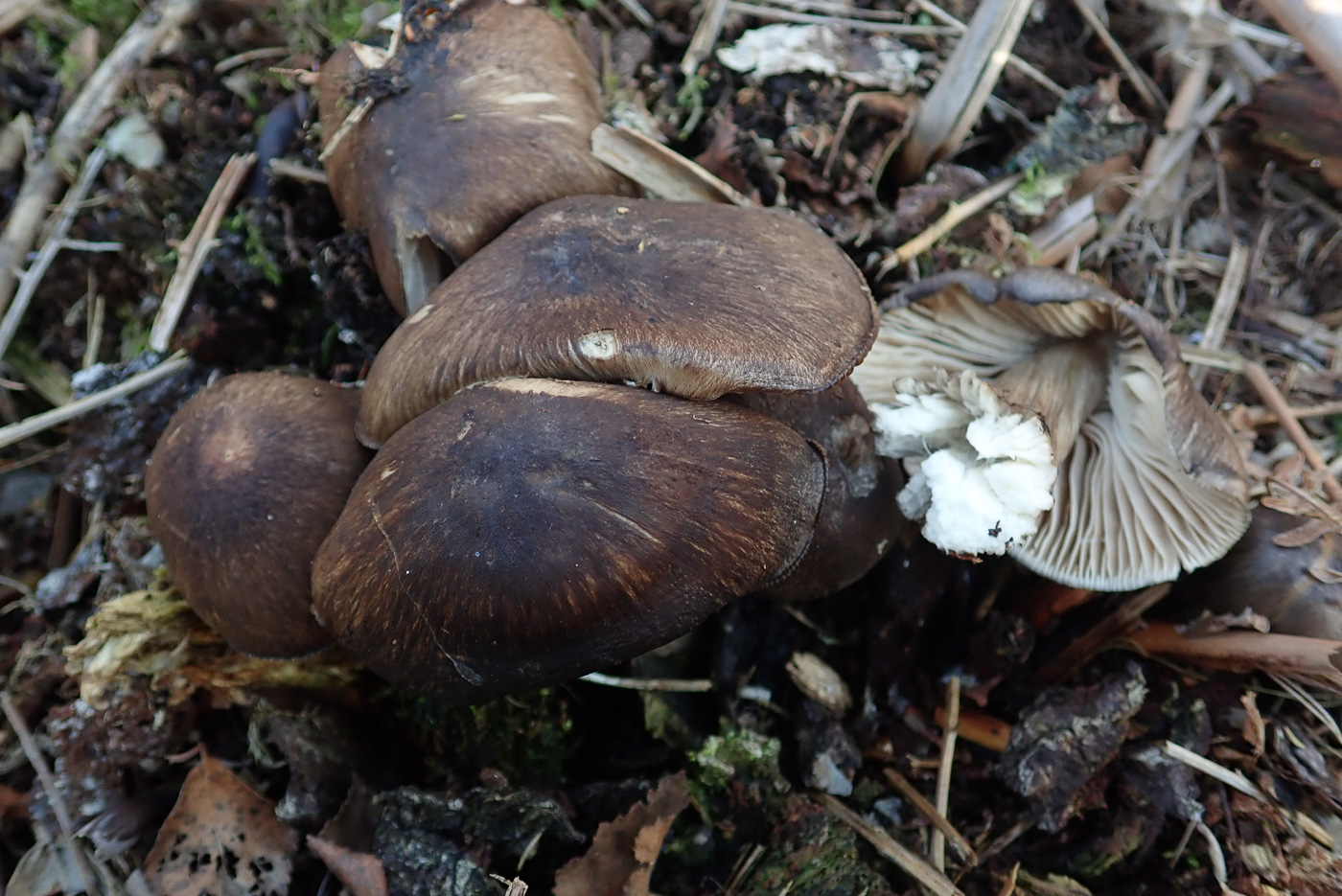
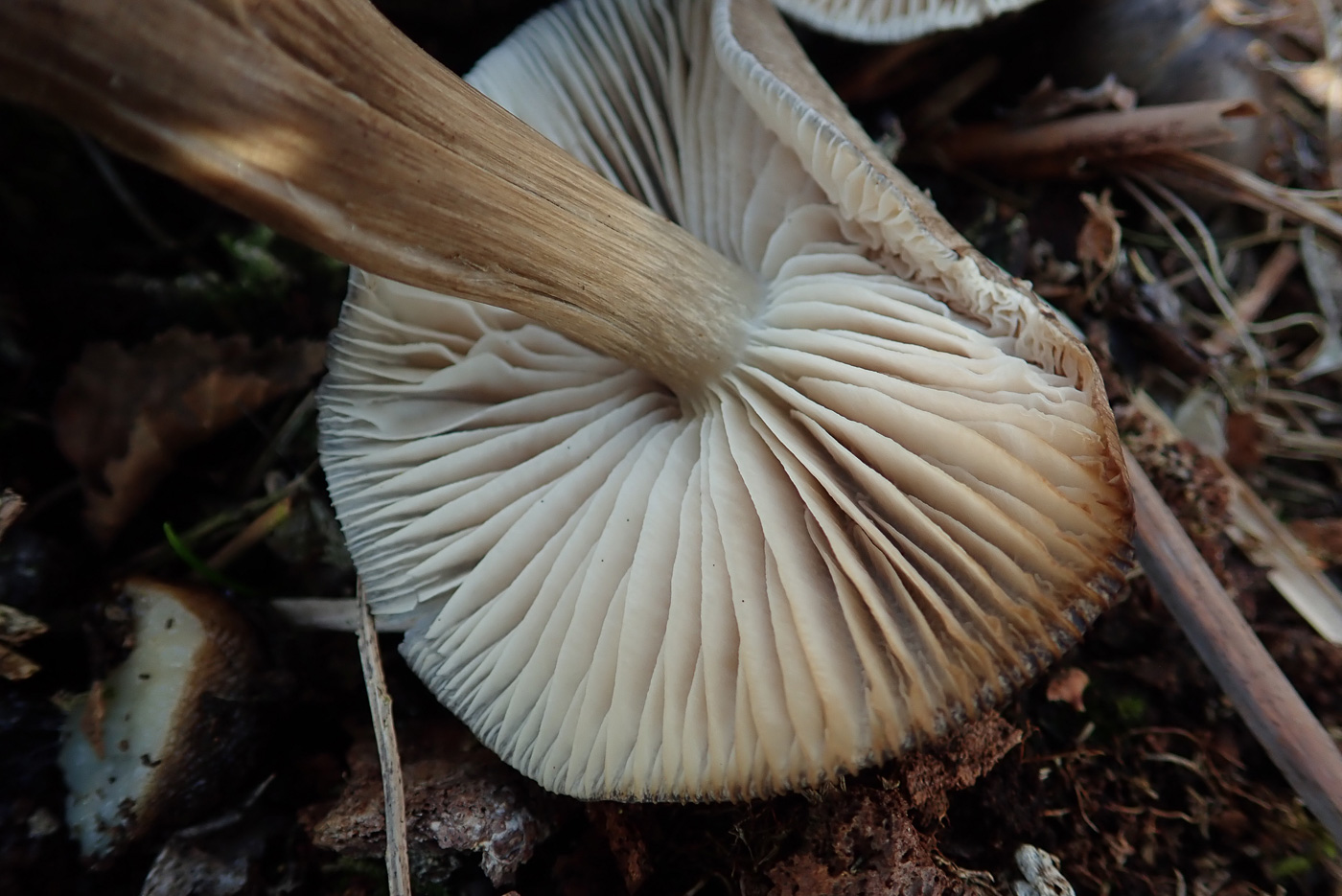 |
November 7th Lyophyllum decastes (Clustered Domecap)
Penny C. came across this tight cluster in a damp mossy area against a Birch stump in Stoke Common. Appearing initially rather like the caps of perhaps a dark Pluteus species, caps are smooth and almost black in the centre and have a rubbery flexible texture. Gills are quite widely spaced and cream, similar to those of Megacollybia platyphylla, and stems are fibrous, whitish and conjoined with the rest of the cluster. A rather characterless and nondescript species, it is quite common in mixed woodland.
|
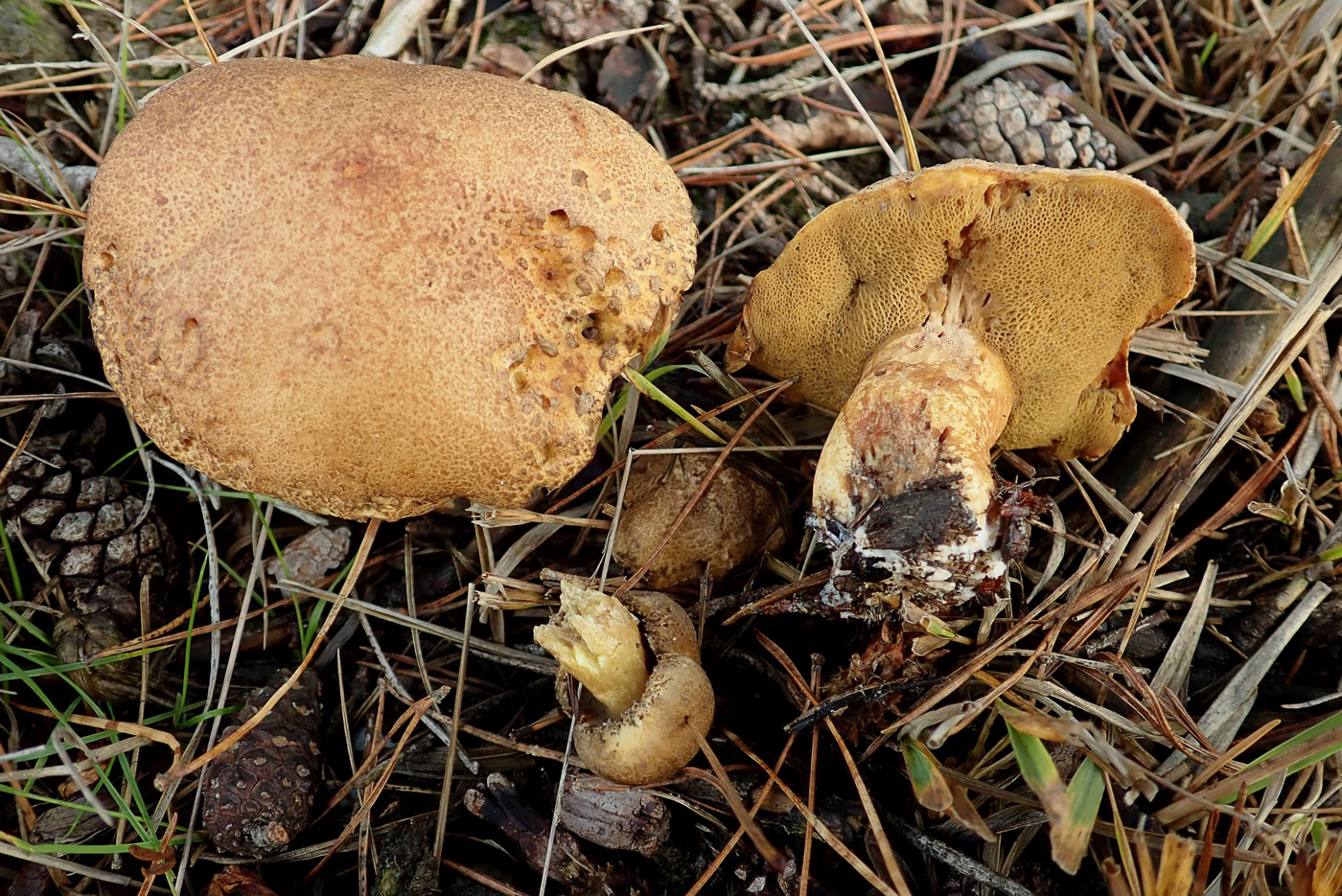
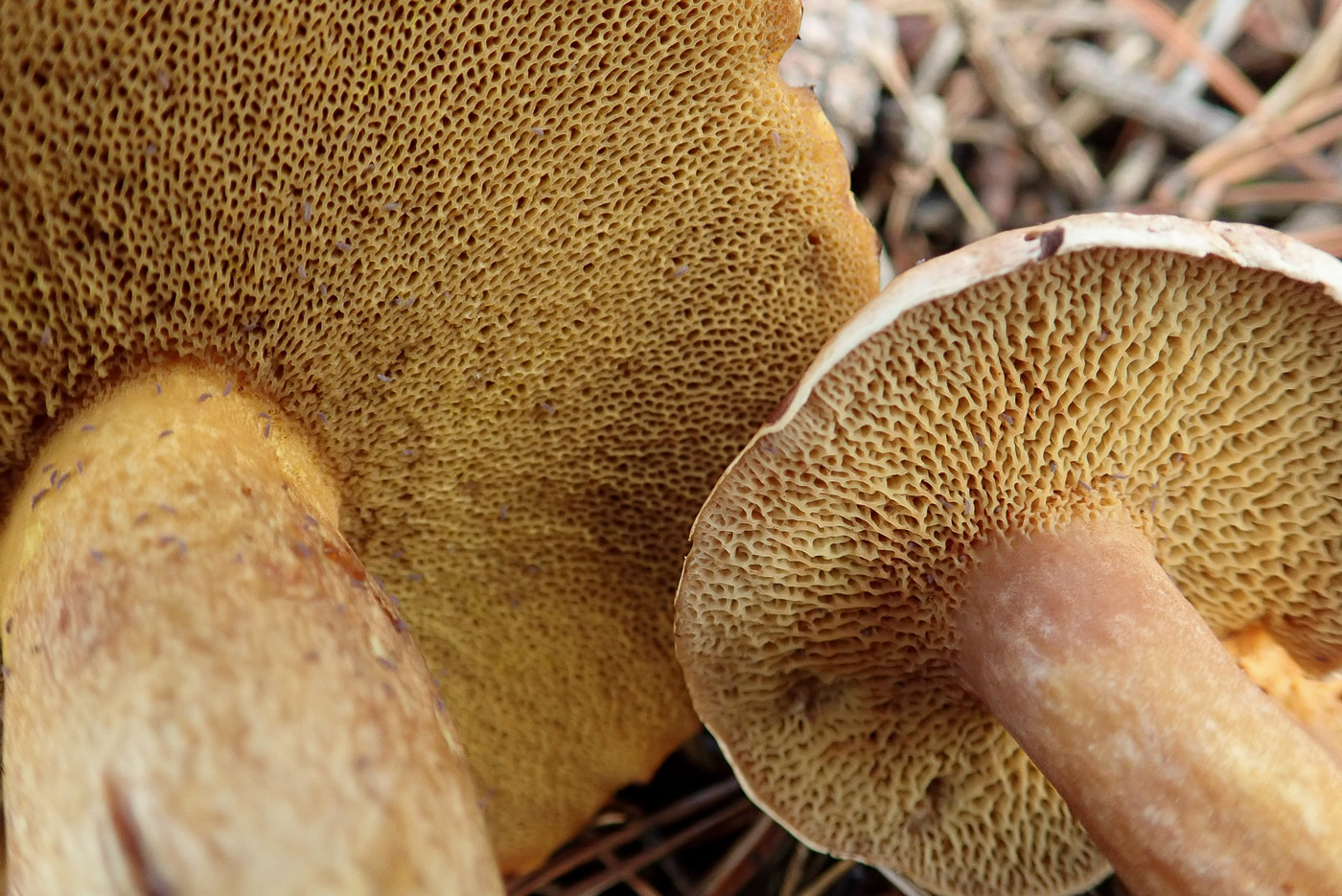 |
November 7th Suillus variegatus (Velvet Bolete)
Penny C. found this species under Pine at Stoke Common along with S. bovinus, giving a good opportunity to compare two somewhat similar Boletes.
Both are host specific with Pine and have yellowish brown caps though S. bovinus seems much more common in our area. S. bovinus has a smooth sticky cap which has pinkish buff tints, whereas S. variegatus has a more textured dry cap surface with no pink tints. The pores of the two are also notably different: in S. variegatus they are rounded and small, described as mustard coloured, whereas in S. bovinus they are irregularly angular and larger, also paler and slightly decurrent. In photo 2 these pore characters can be seen with S. variegatus on the left and S. bovinus on the right.
|
November 6th 2020
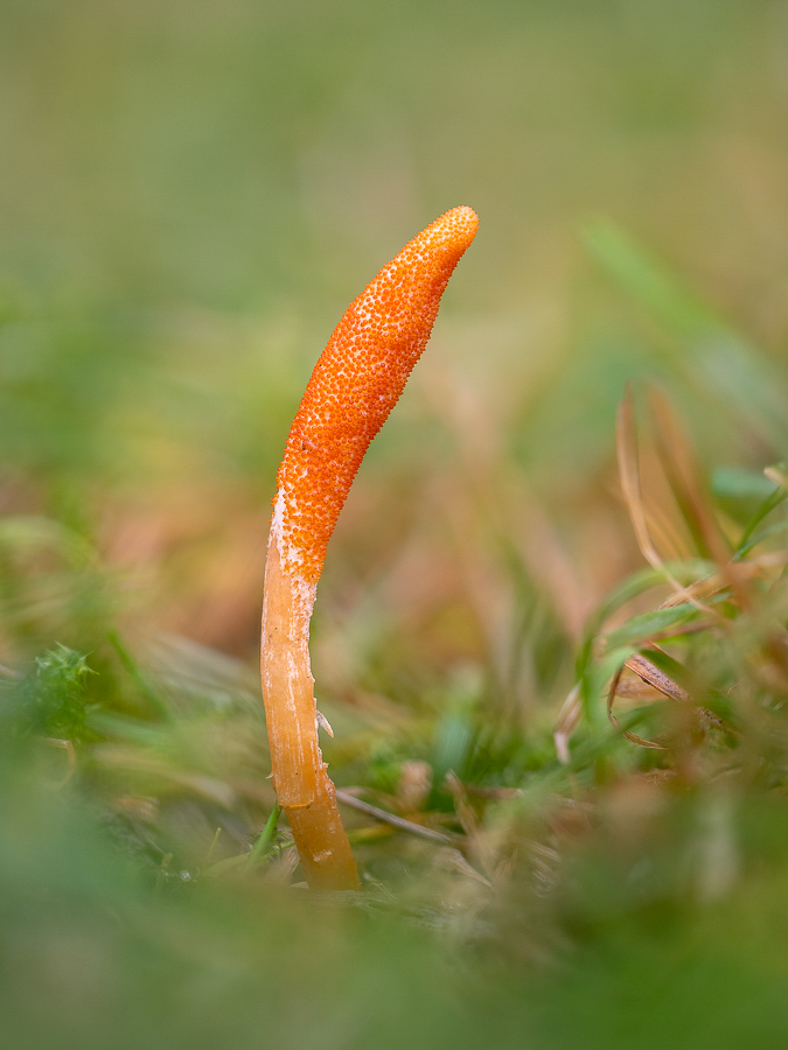
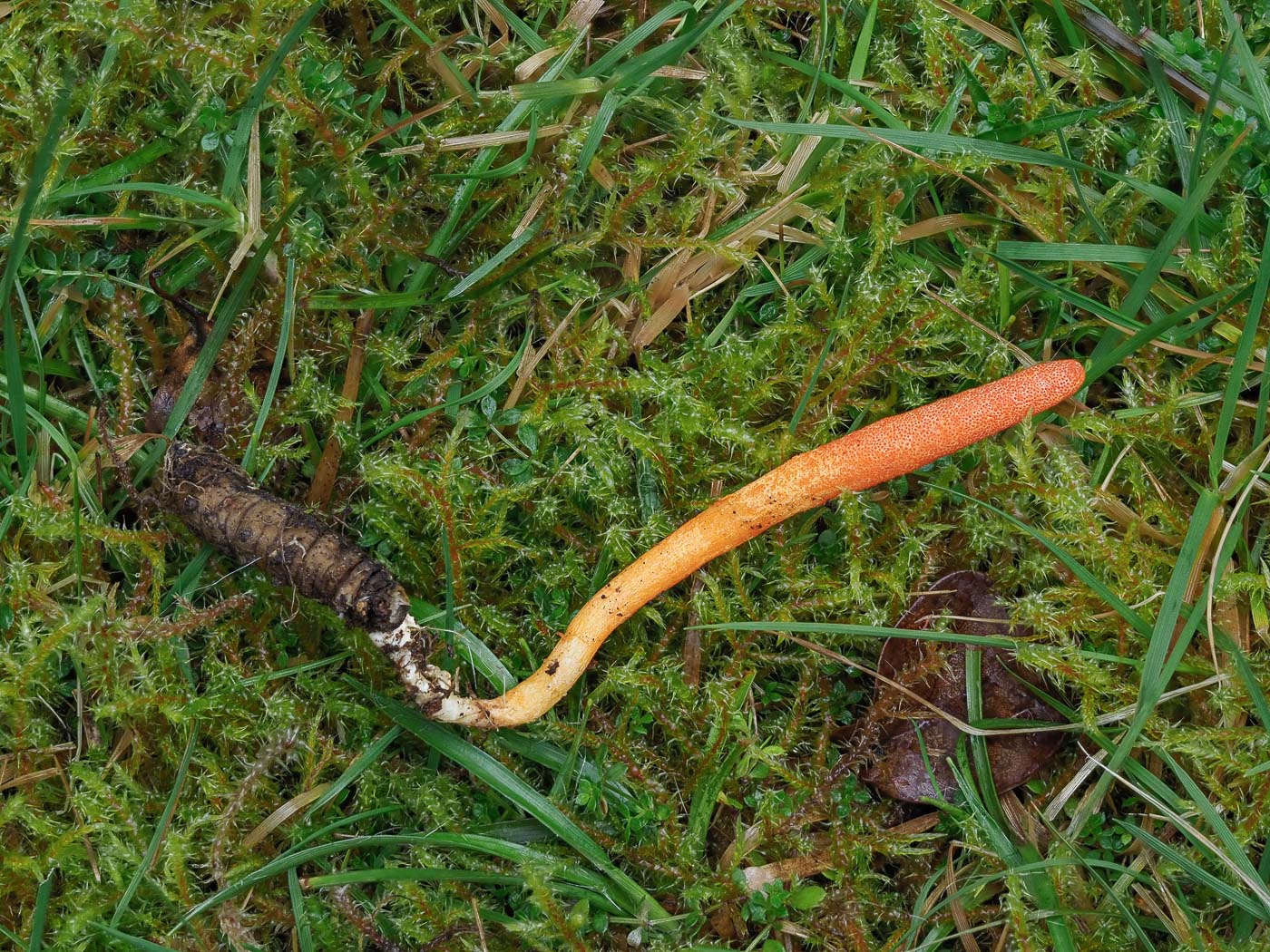 |
November 6th Cordyceps militaris (Scarlet Caterpillar club)
Barry Webb's sharp eyes noticed this unusual fungus in a grassy area in Burnham Beeches. Superficially similar in some respects to one of our grassland Clubs (Clavulinopsis), a closer look reveals a very different texture as well as colour. The upper half is roughened and punctate and below this the stalk is paler and smoother. This is an Ascomycete which grows out of the pupae of butterflies and if you find one and dig down carefully around it, you can often find the whole pupae to which the base of the stalk is attached, usually about an inch or two under the surface. (See photo 2 taken by Gill Ferguson at the same site last November which shows the unfortunate host having been carefully extricated in tact!) Not rare but easily overlooked, it is usually in grassland, lawns etc.
|
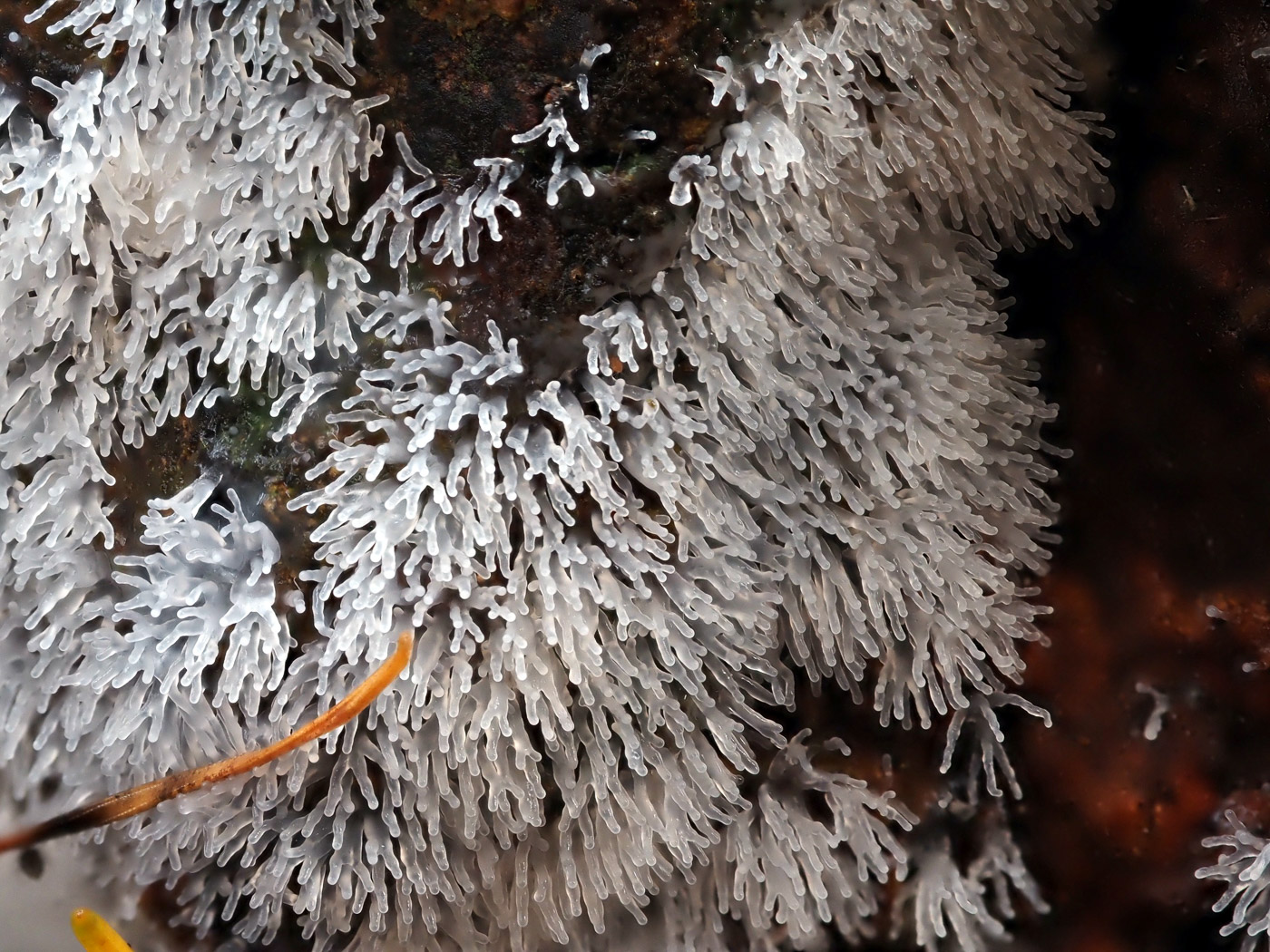 |
November 6th Ceratiomyxa fruticulosa (Coral Slime)
Though we have photos of this species dated Oct 18, it is much in evidence again at the moment and worth looking out for particularly on rotting woody conifer stumps or remains. Claire Williams found this beautiful delicate cluster of tiny white tendrils in Penn Wood.
|
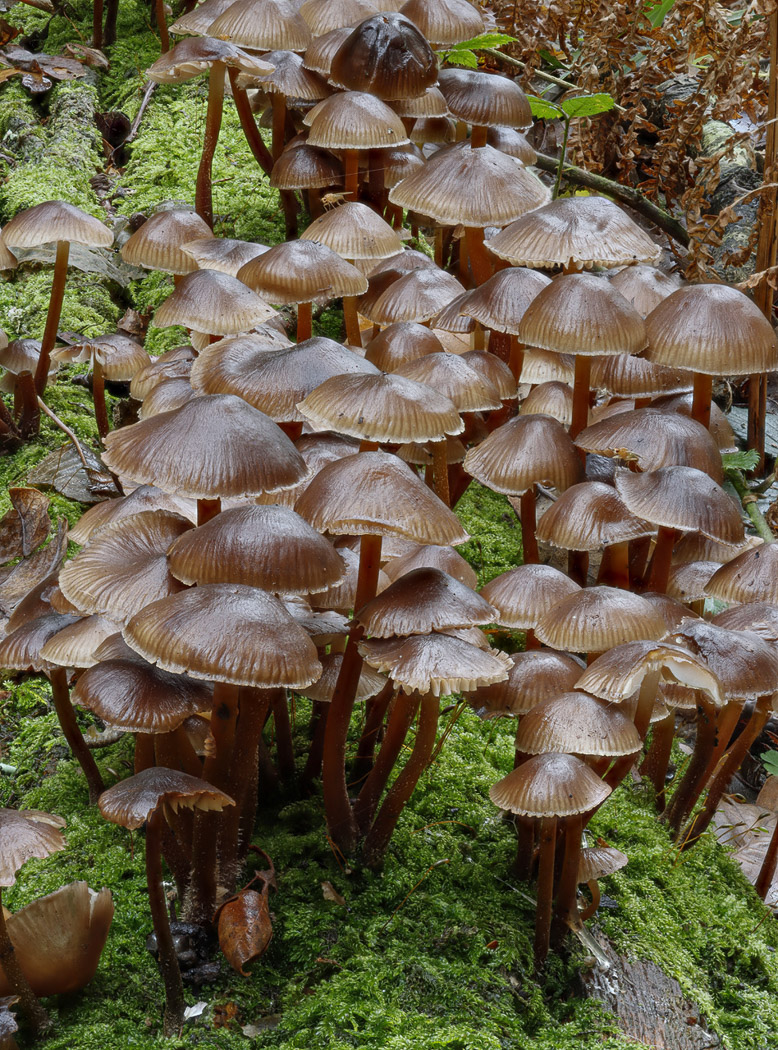
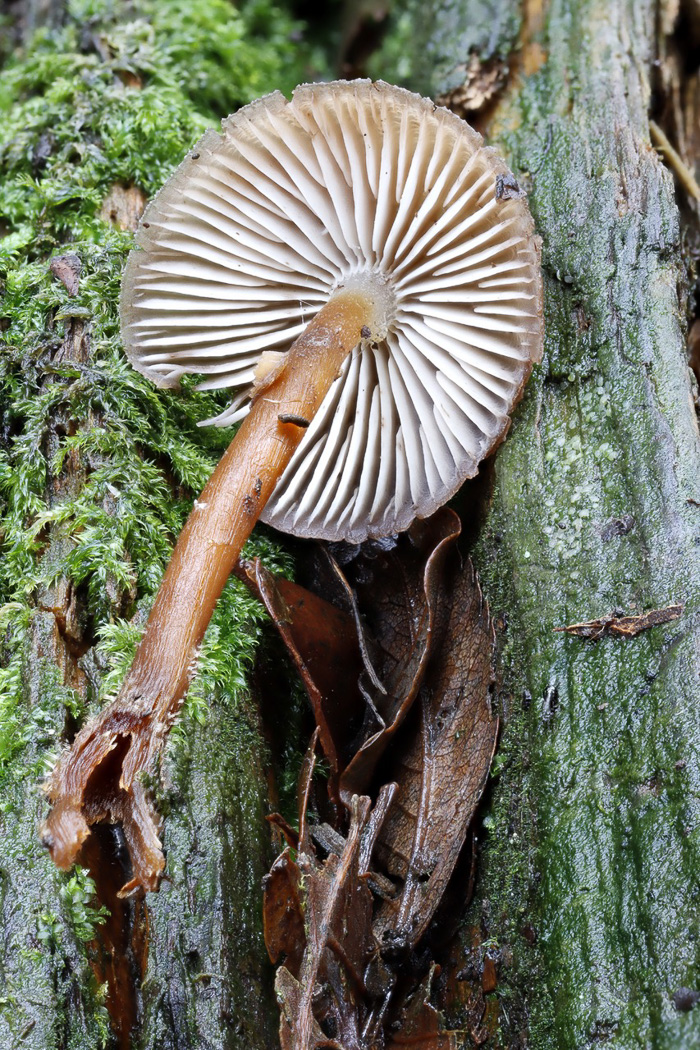 |
November 6th Mycena inclinata (Clustered Bonnet)
We have a collection of this species dated Oct 16 but Paul Goby's photo taken in Naphill Common is well worth including here because it shows all the diagnostic field characters really well (but not its smell!). The shiny brown medium sized caps and orange stems, together with the tightly clustered growth habit and occurrence on fallen Oak, are sufficient to name it in the field. Pick one to acquaint yourself with its very individual smell which to Penny is of lupins!
|
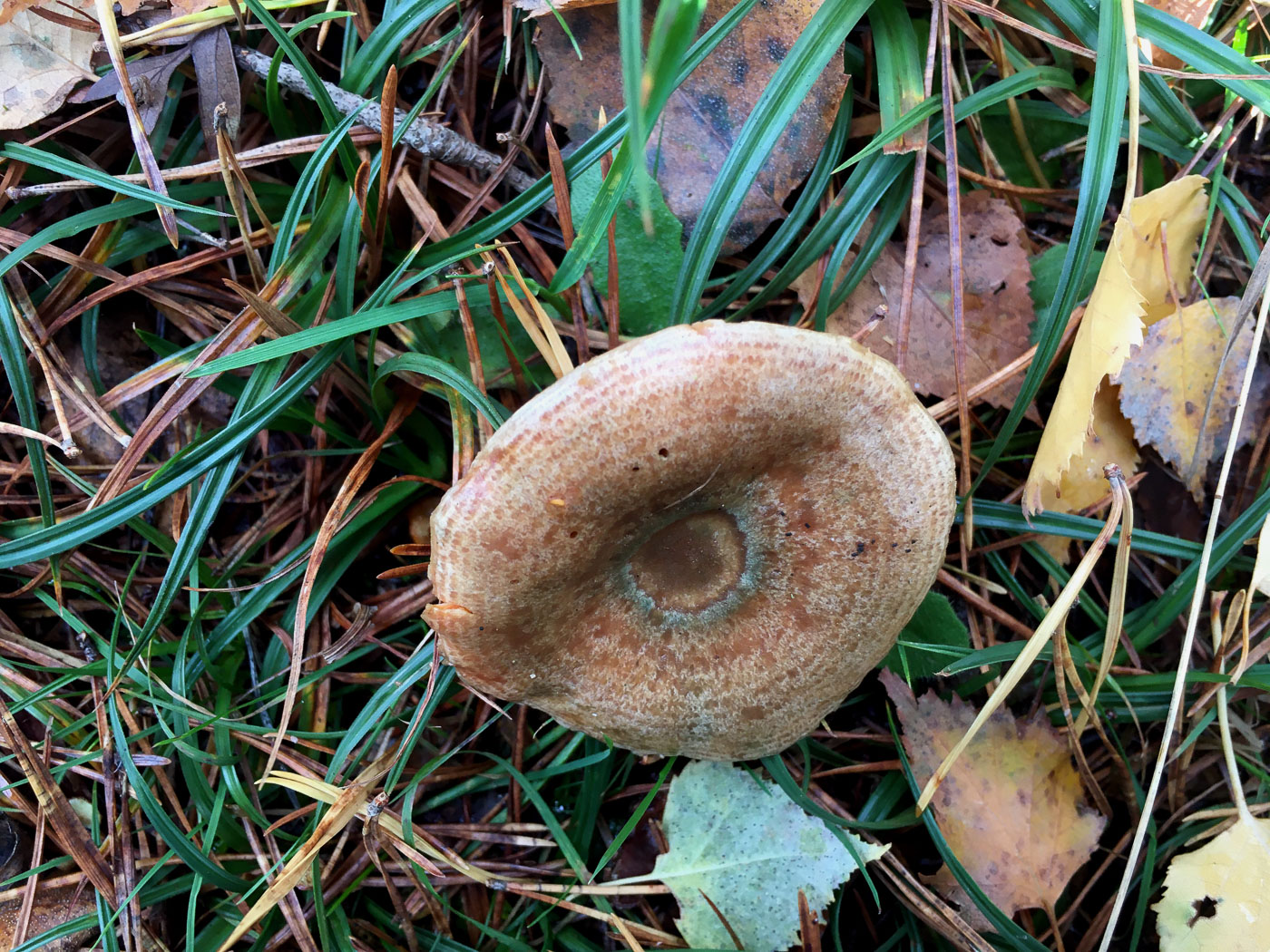
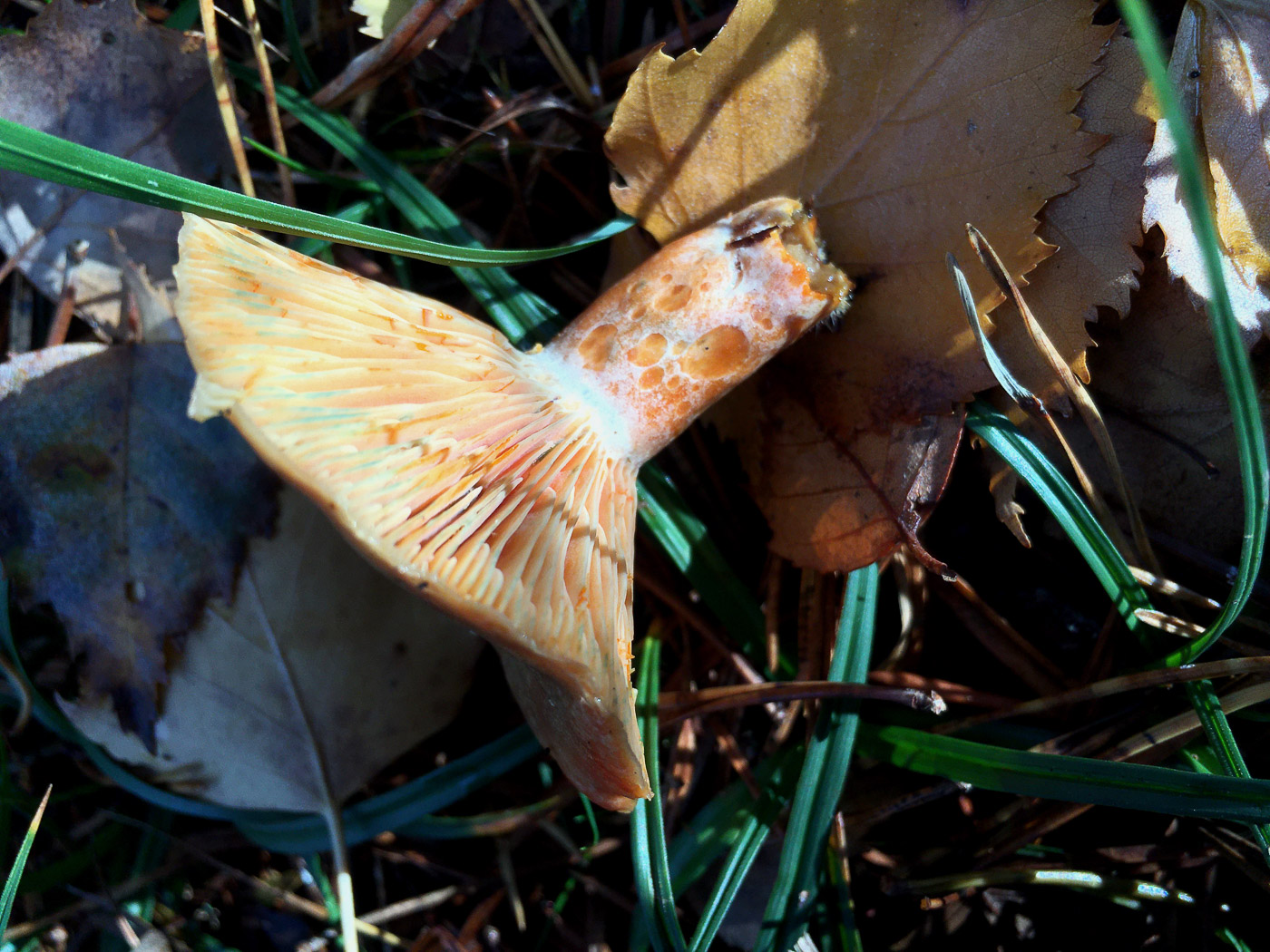 |
November 6th Lactarius deliciosus (Saffron Milkcap)
We have a previous singleton of this species (dated Sept 25) but it's worth including again here to show that it is still fruiting. Also today's fruit body, found by Russell Ness under Pine in Burnham Beeches, shows the characteristic 'scobiculae' (darker spots) on the stem rather well. Russell was careful to check that no wine red discoloration had occurred half an hour after collection which would have indicated that this was L. semisanguifluus. See that species dated Oct 05 for comparison.
|
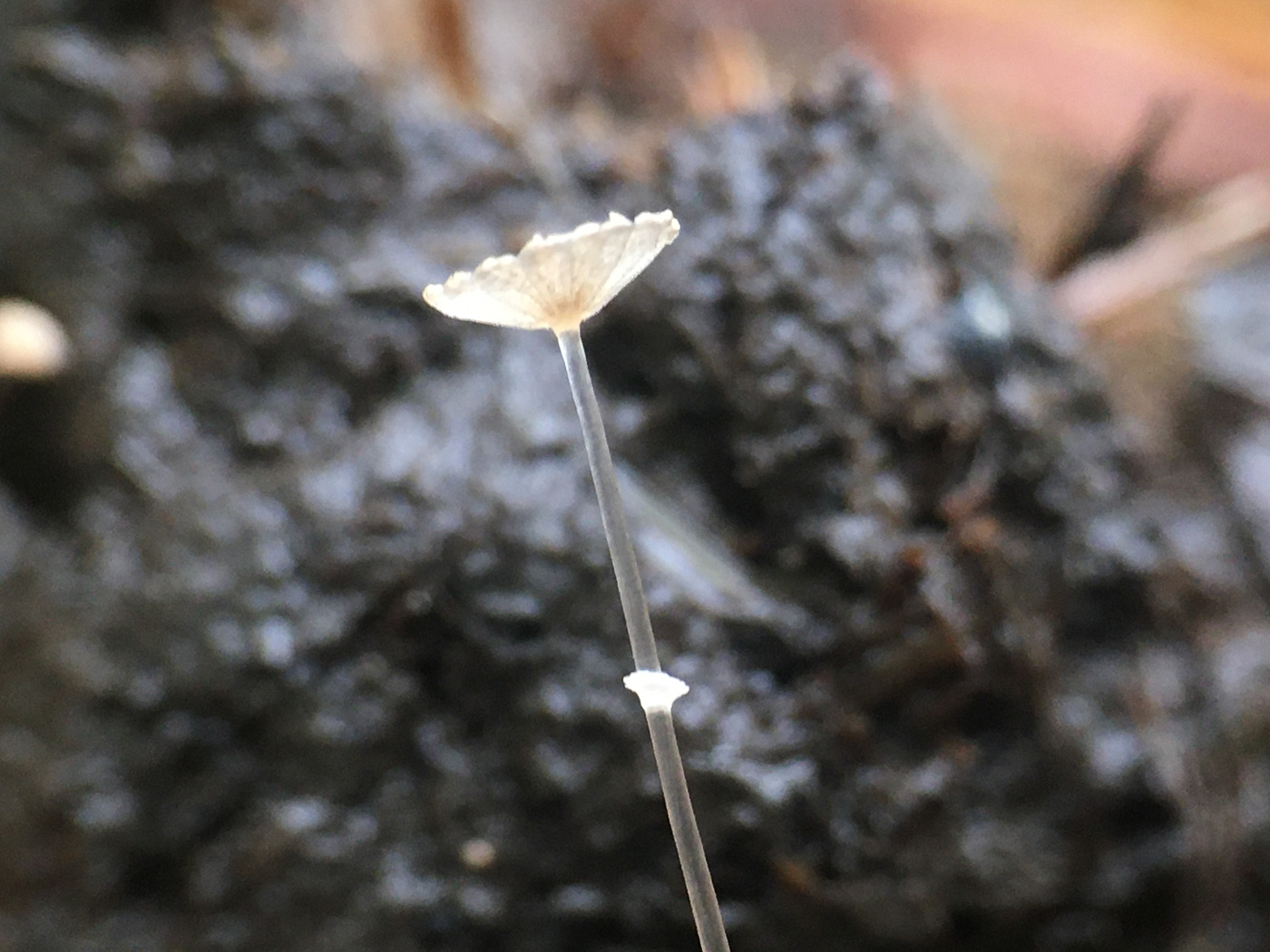
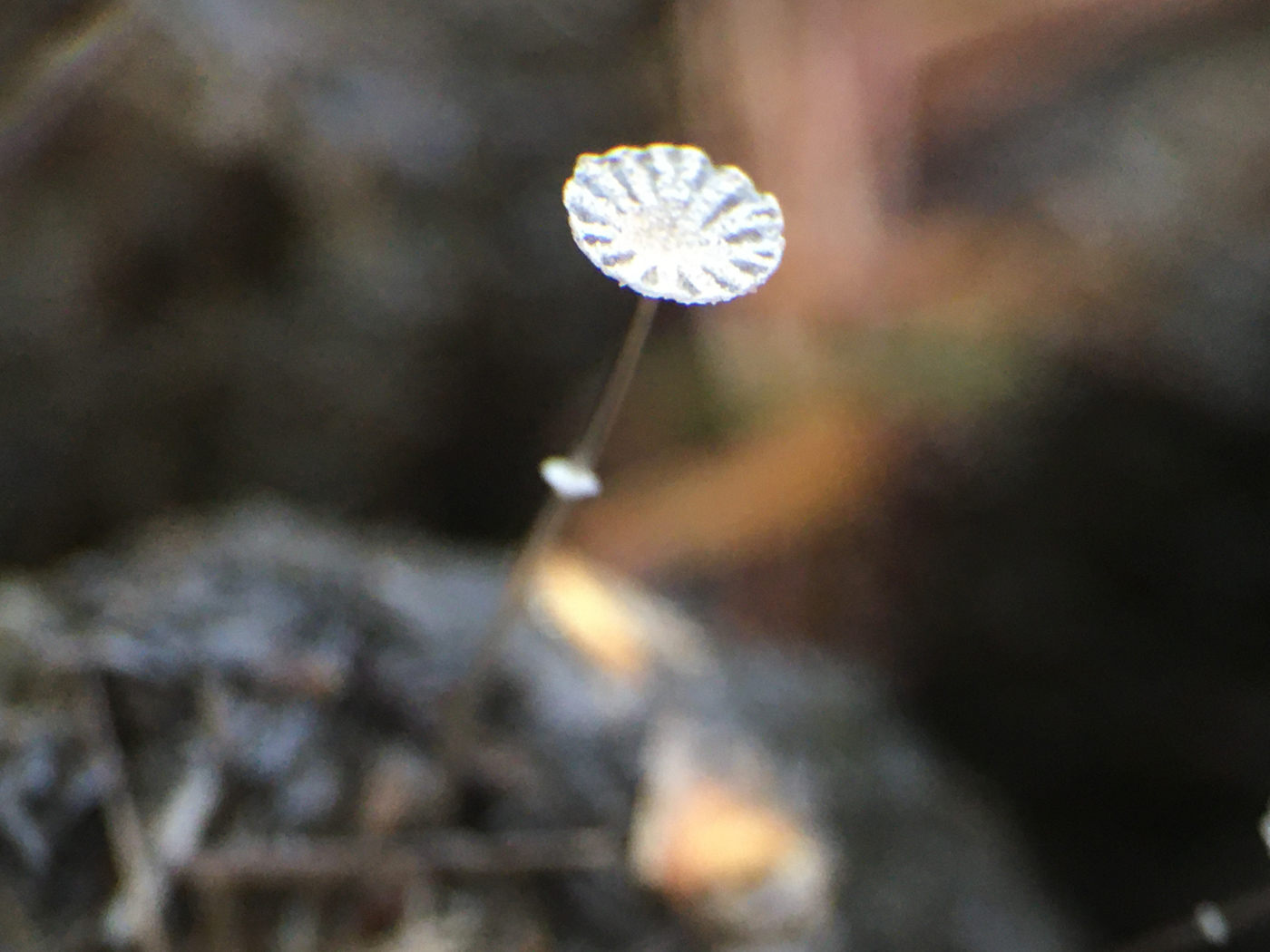
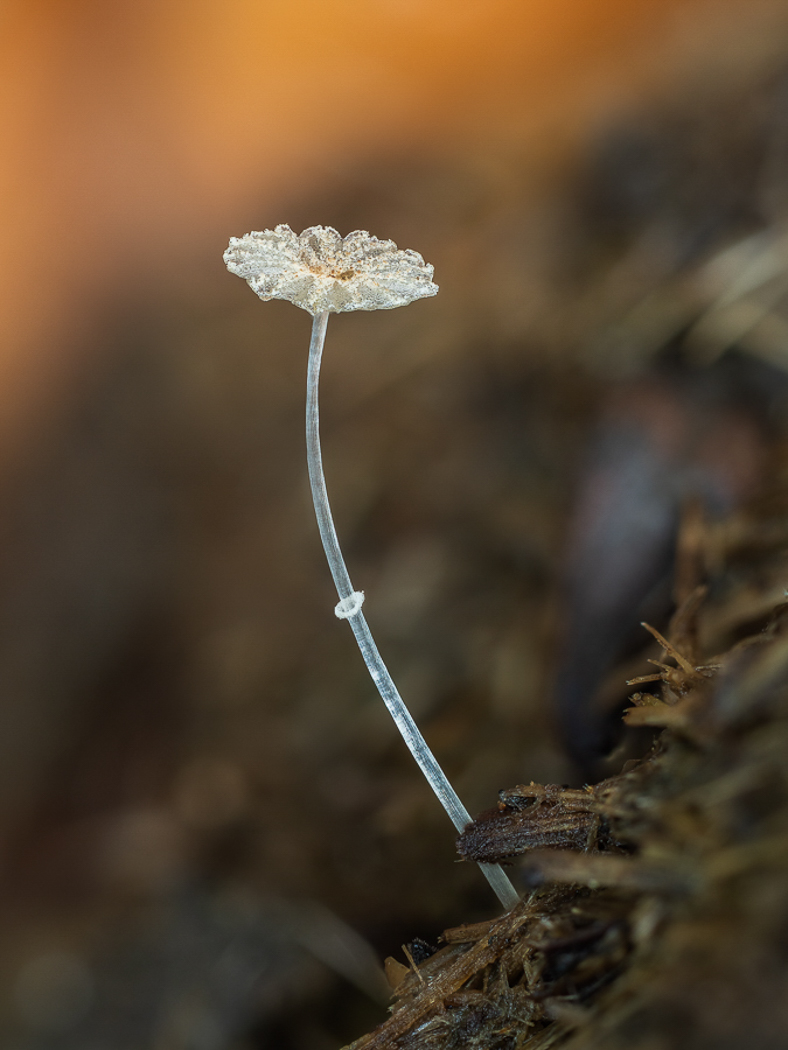 |
November 6th Coprinopsis ephemeroides (an inkcap with no common name)
Russell Ness certainly needed sharp eyes to spot this uncommon tiny species growing on pony dung in Burnham Beeches. Caps don't exceed 5 mm across and are so thin fleshed they are virtually transparent. There are many species of Inkcap and indeed other genera which grow in dung, some equally tiny as today's species, but the diagnostic feature to spot in the field, as Russell did, is the fact that there is an infinitesimal ring on the stem, clearly visible in both photos. Derek was happy to confirm the identification from Russell's photo, this being just the fourth time it's been found in the county. However, we've now received a slightly earlier photo (photo 3) sent in by Barry Webb, dated October 12th, making Russell's find the 5th county record!
|
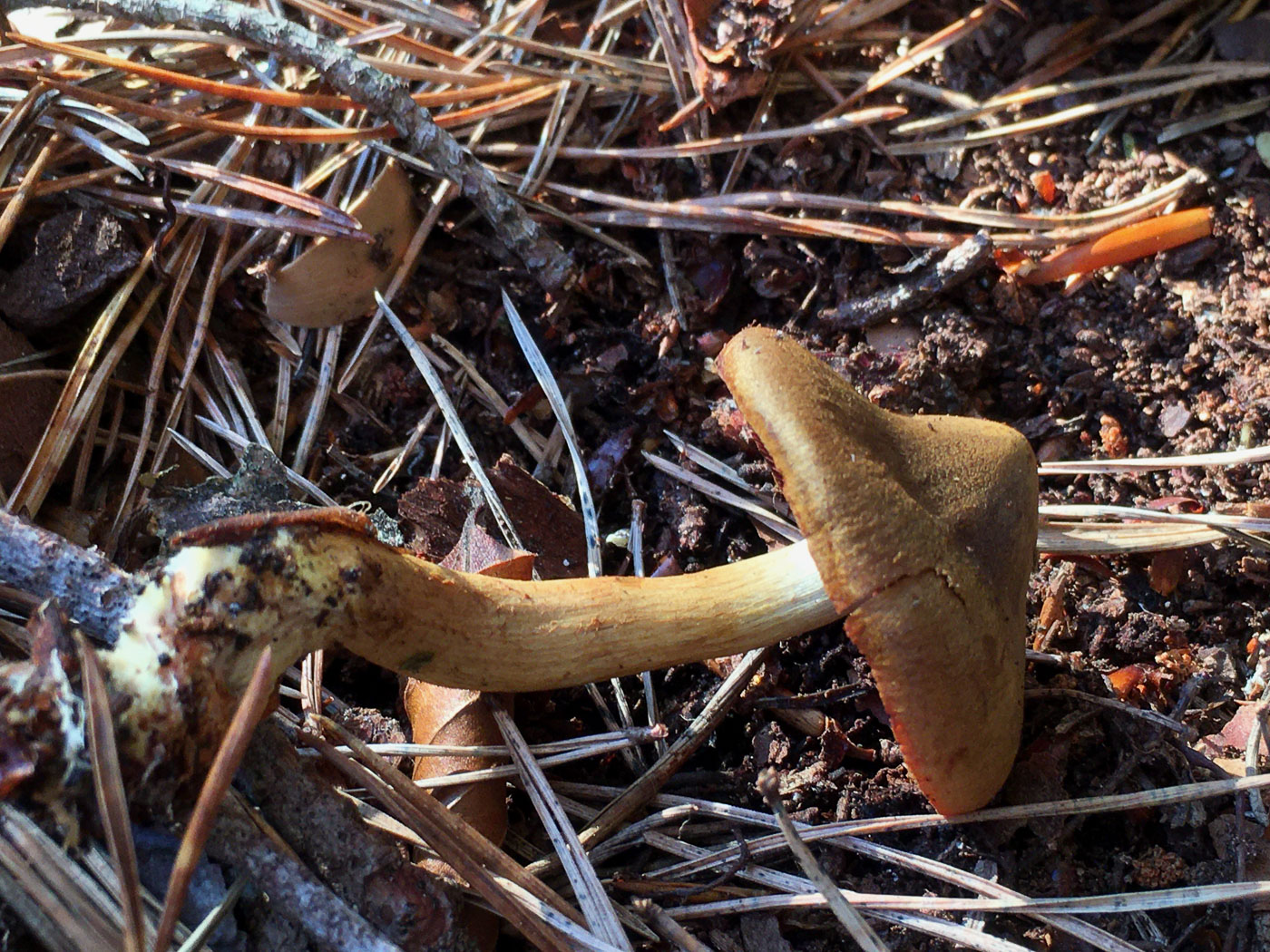
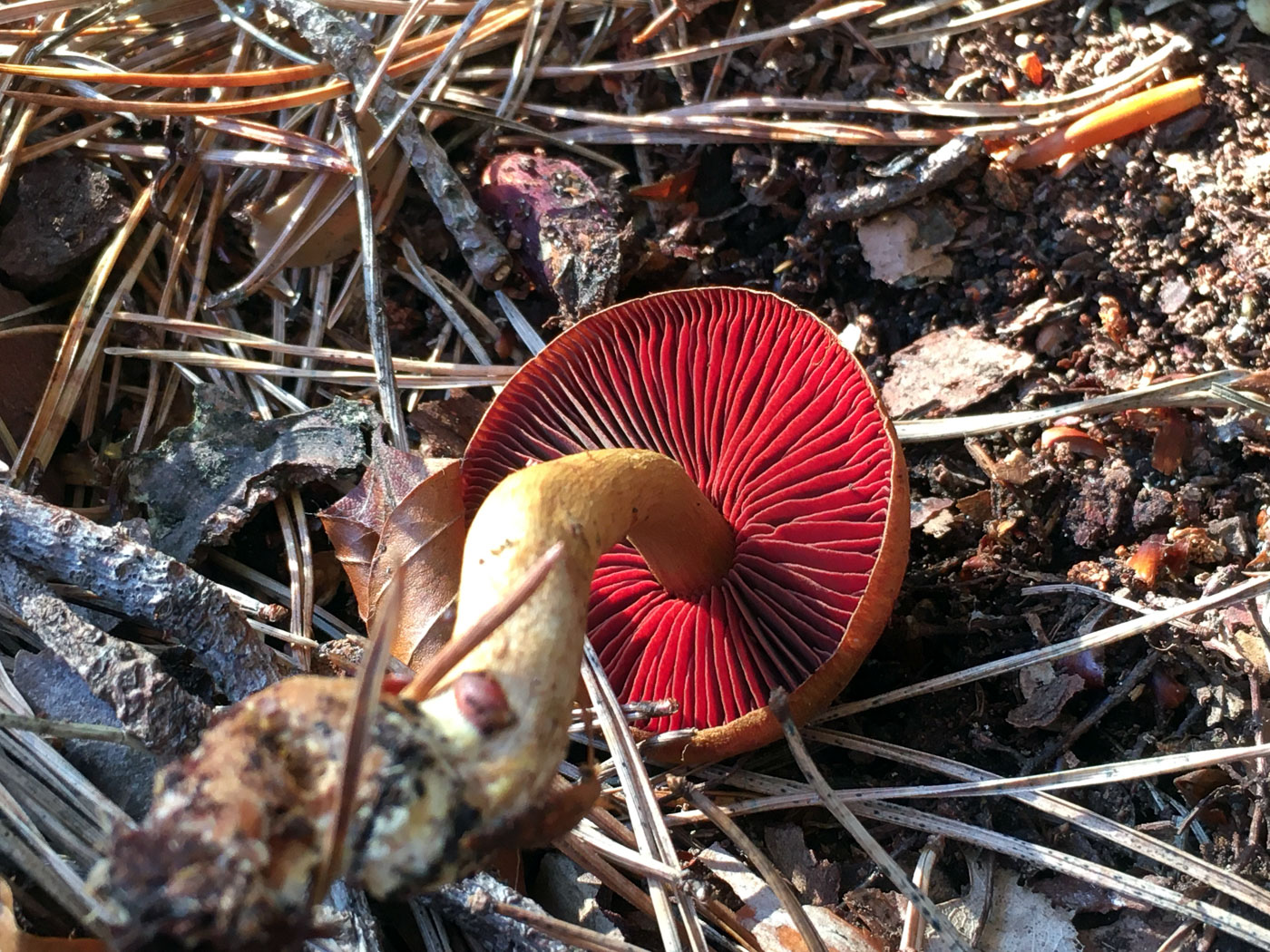 |
November 6th Cortinarius semisanguineus (Surprise Webcap)
We have an earlier singleton of this beautiful Webcap (dated Oct 19), but Russell Ness just couldn't resist this singleton found under Pine in Burnham Beeches with the sunlight on it! The gill colour is just incredible and no exaggeration - no prizes for guessing why this species is named 'surprise'!
|
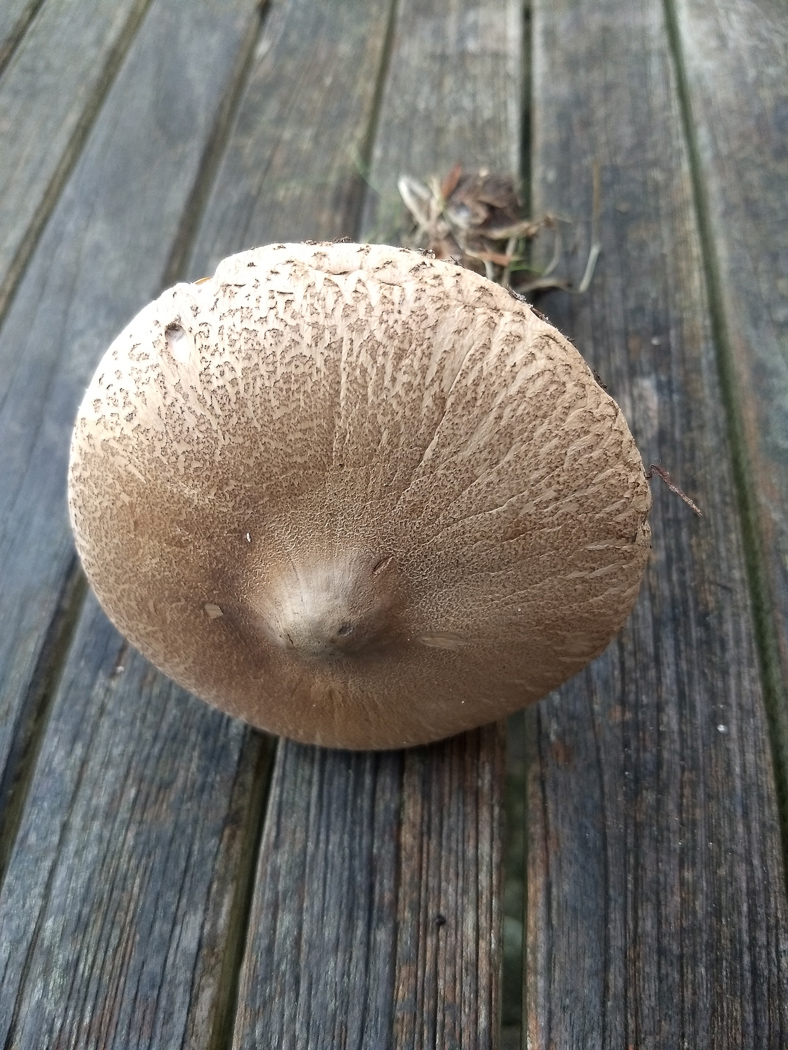
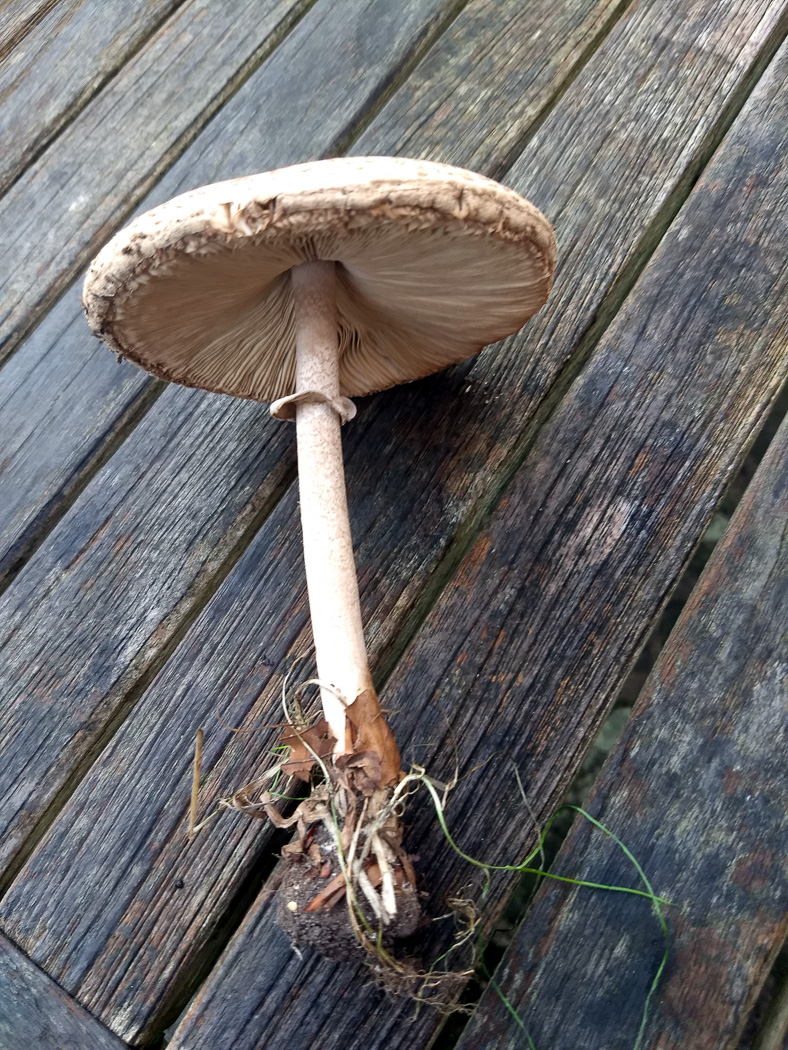 |
November 6th Macrolepiota excoriata (a Parasol with no common name)
Richard Fortey found and identified this unusual Parasol growing in a grass verge in Fawley. It is a smaller species than the familiar M. procera, not exceeding 10 cm across, and the key features to look for are the simple pale ring on the stem which can be lost when mature, also the stem is pale and lacks the darker 'snakeskin' markings characteristic of other species. The cap is also pale cream to buff, lacks darker brown colours and the cap covering tends to retract or become torn at the margin. We have only three previous county records of this species.
|
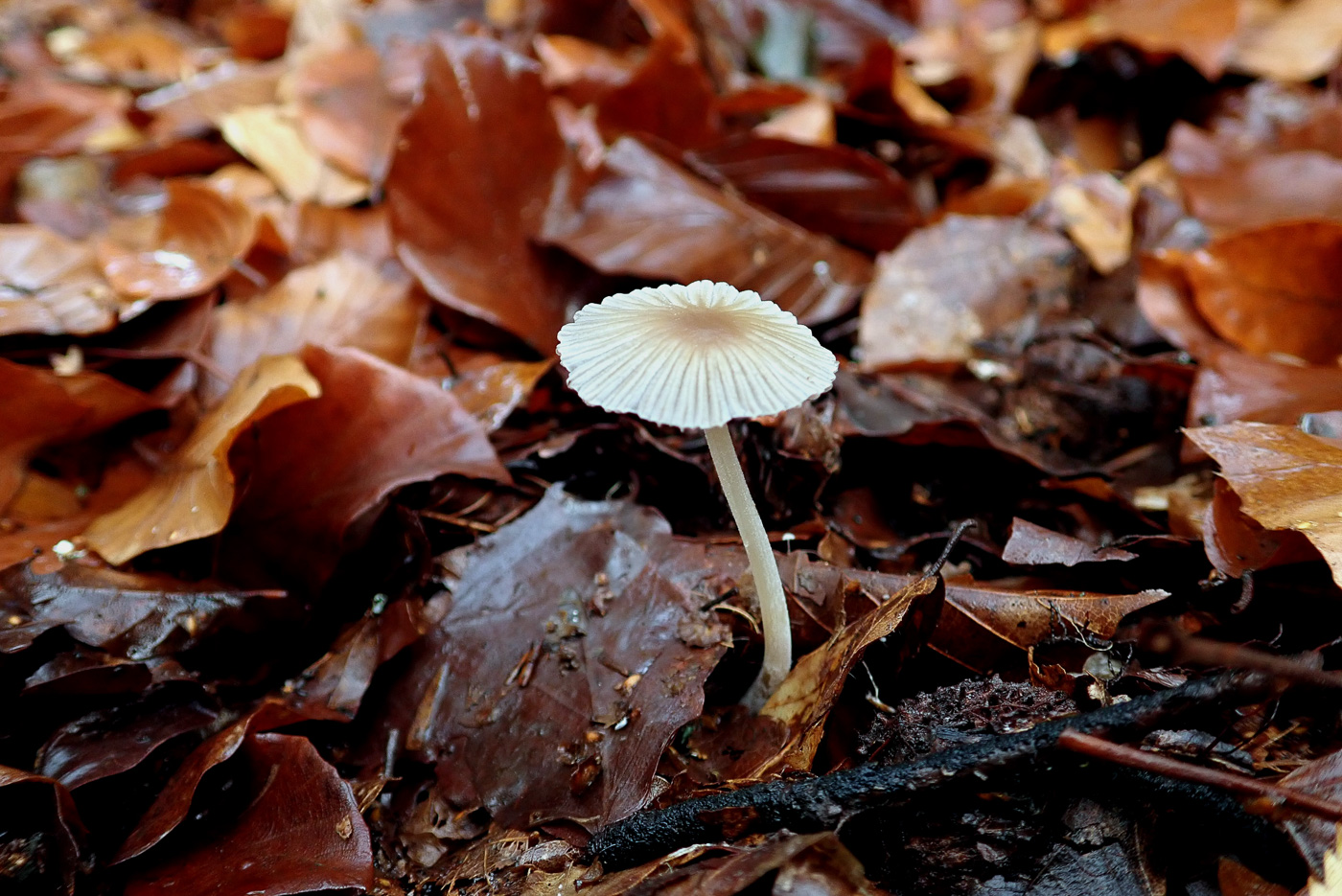
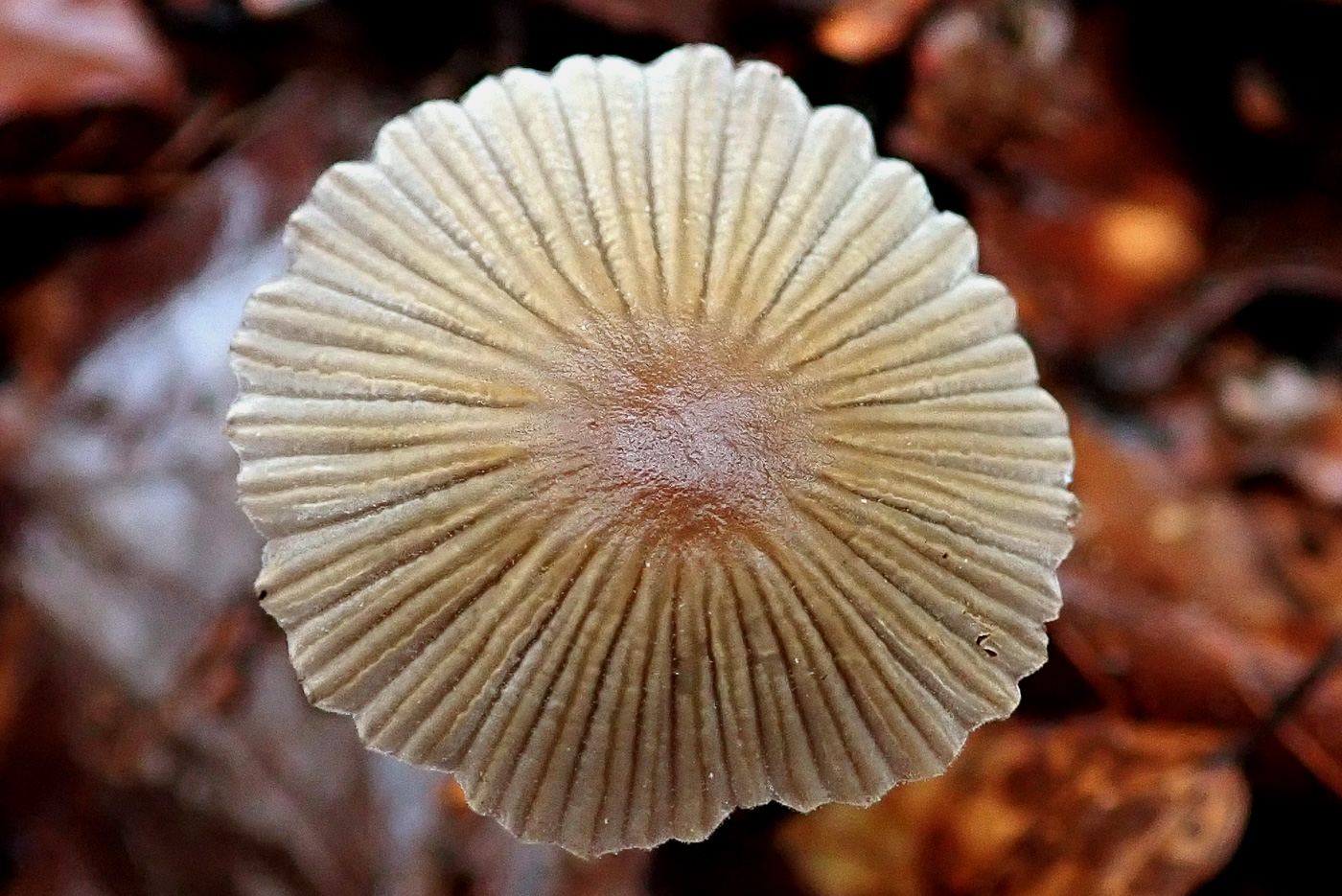
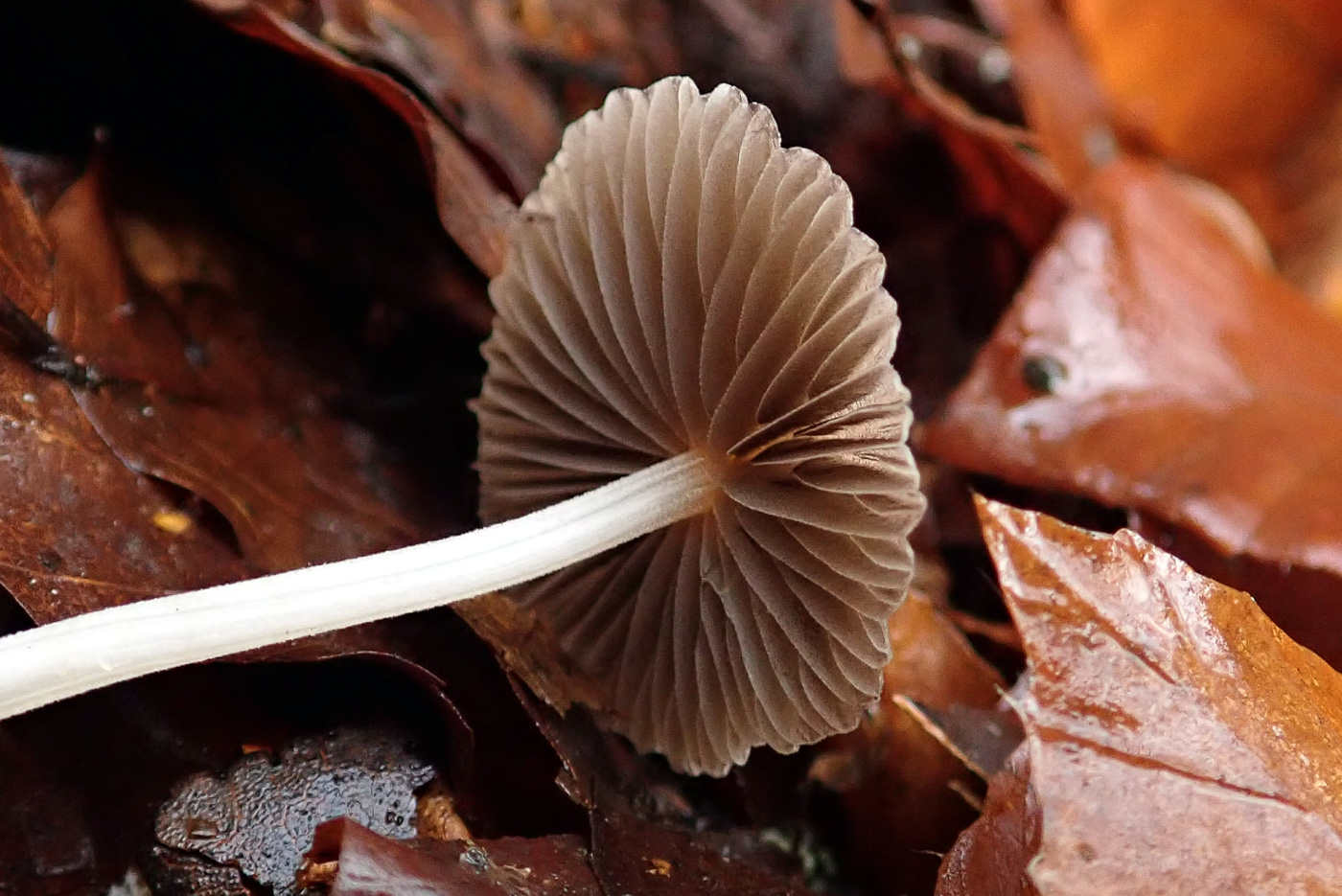 |
November 6th Coprinellus impatiens (an Inkcap with no common name) 
On first spotting this pretty little Inkcap growing in soil /woody litter in Burnham Beeches, Penny C. suspected it was a species of Parasola from its cap shape and thin flesh. The cap was about 2 cm across and on collection, however, it didn't quite have the Parasola 'jizz' being a bit too grey over all, so it was a case of careful microscopic examination followed by working through a key to arrive at a name. It was comforting to read the comment that this species can appear similar to Parasola; it is quite a common woodland Inkcap though not one nameable in the field.
|
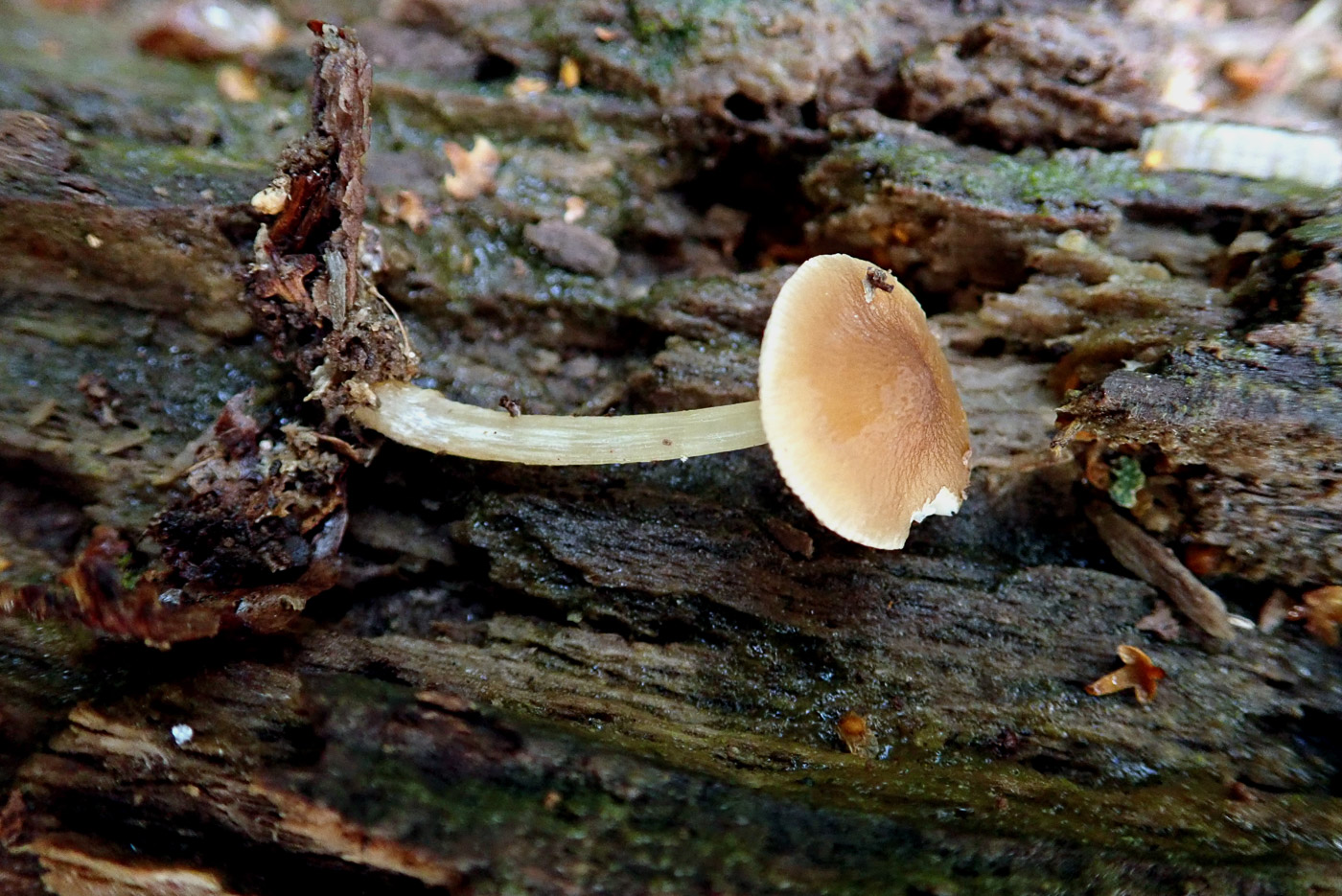
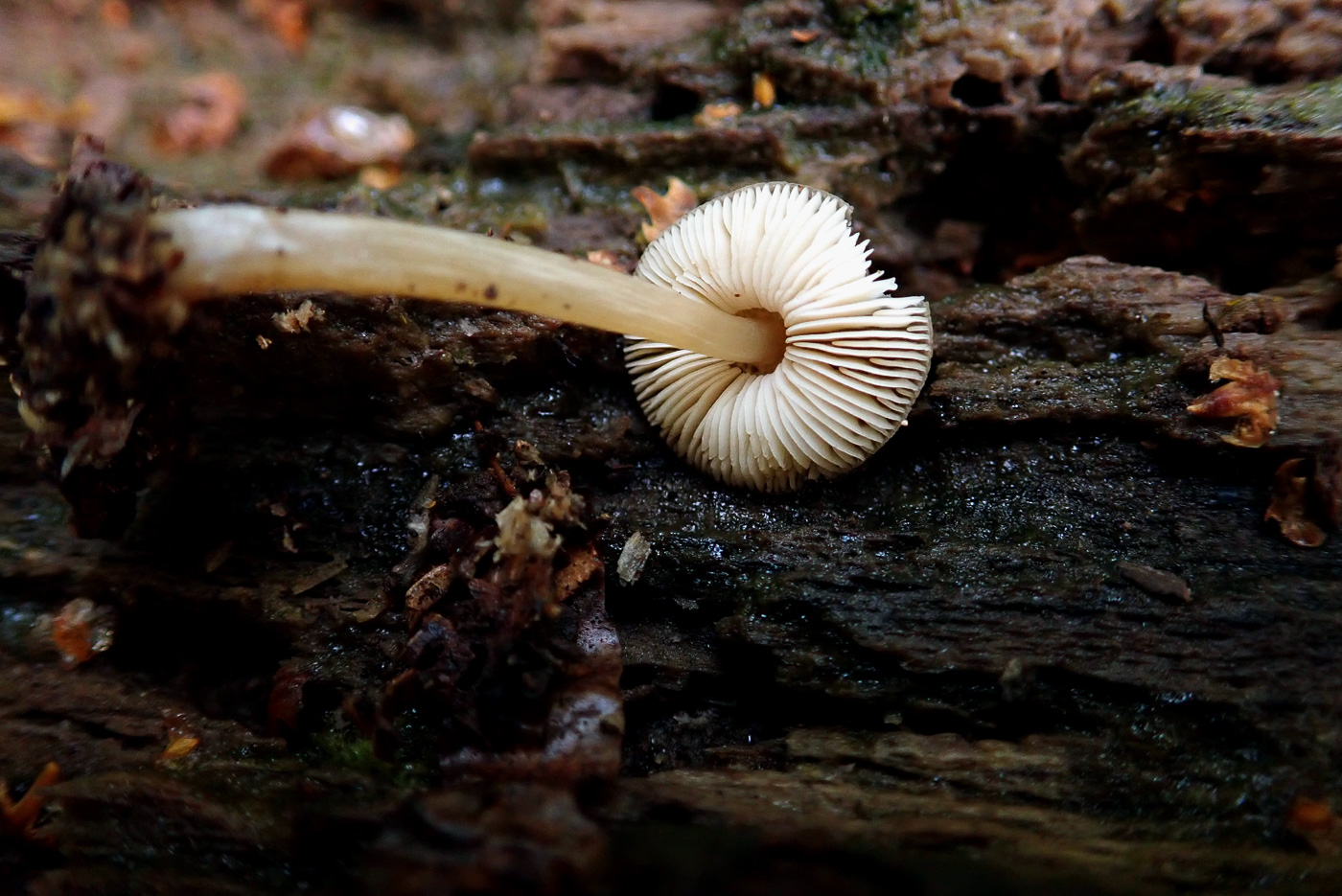
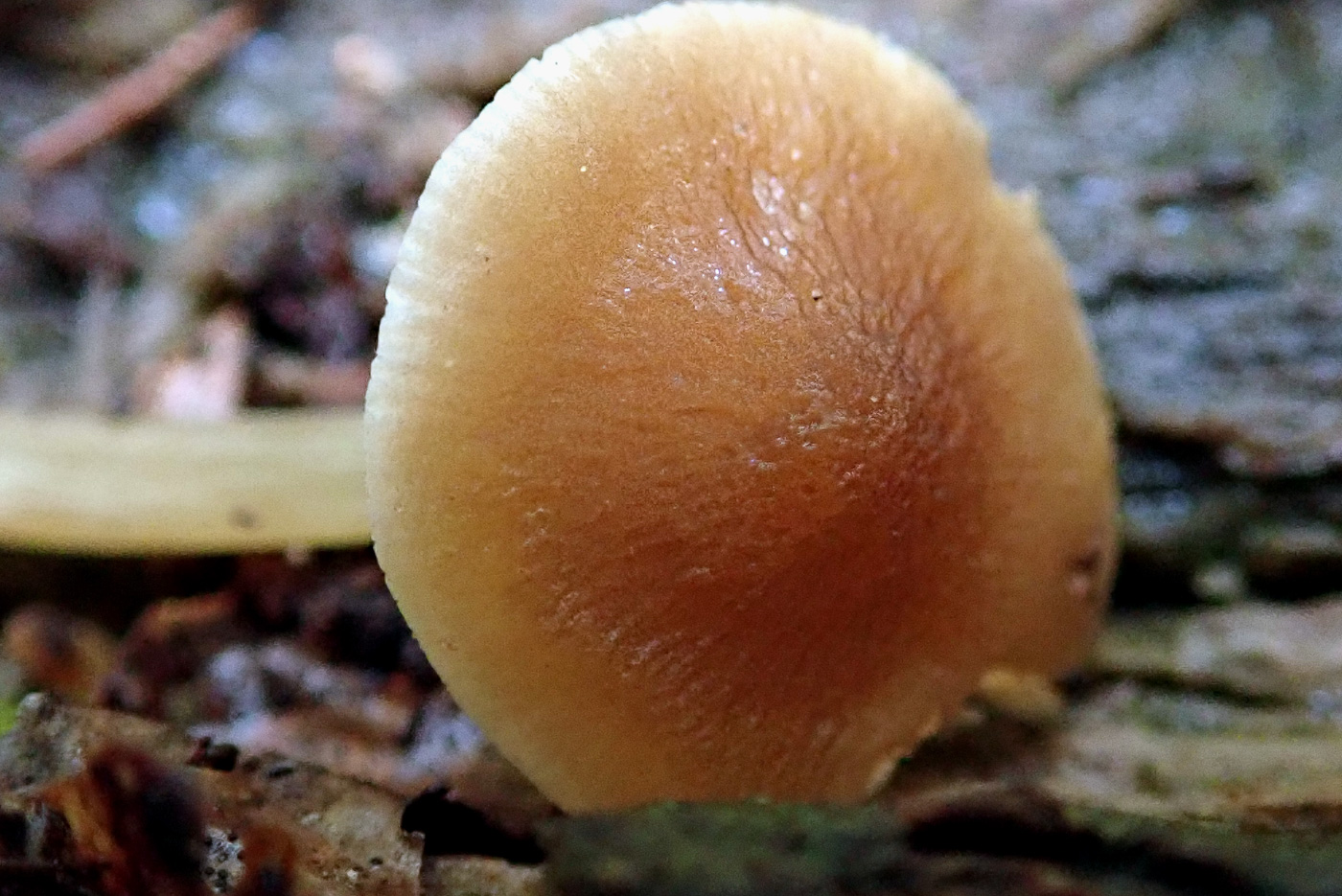 |
November 6th Pluteus podospileus (A Shield with no common name) 
Penny C. found this tiny LBJ (with cap only 1 cm across) on woody debris in Burnham Beeches and nearly passed it by but luckily turned it over to discover the pale pink free gills of this genus. She worked through the key at home and the cap surface viewed with a scope led her straight to this not uncommon species which in some literature has two forms, one of which - minutissimus - would be appropriate if recognised on the British list.
|
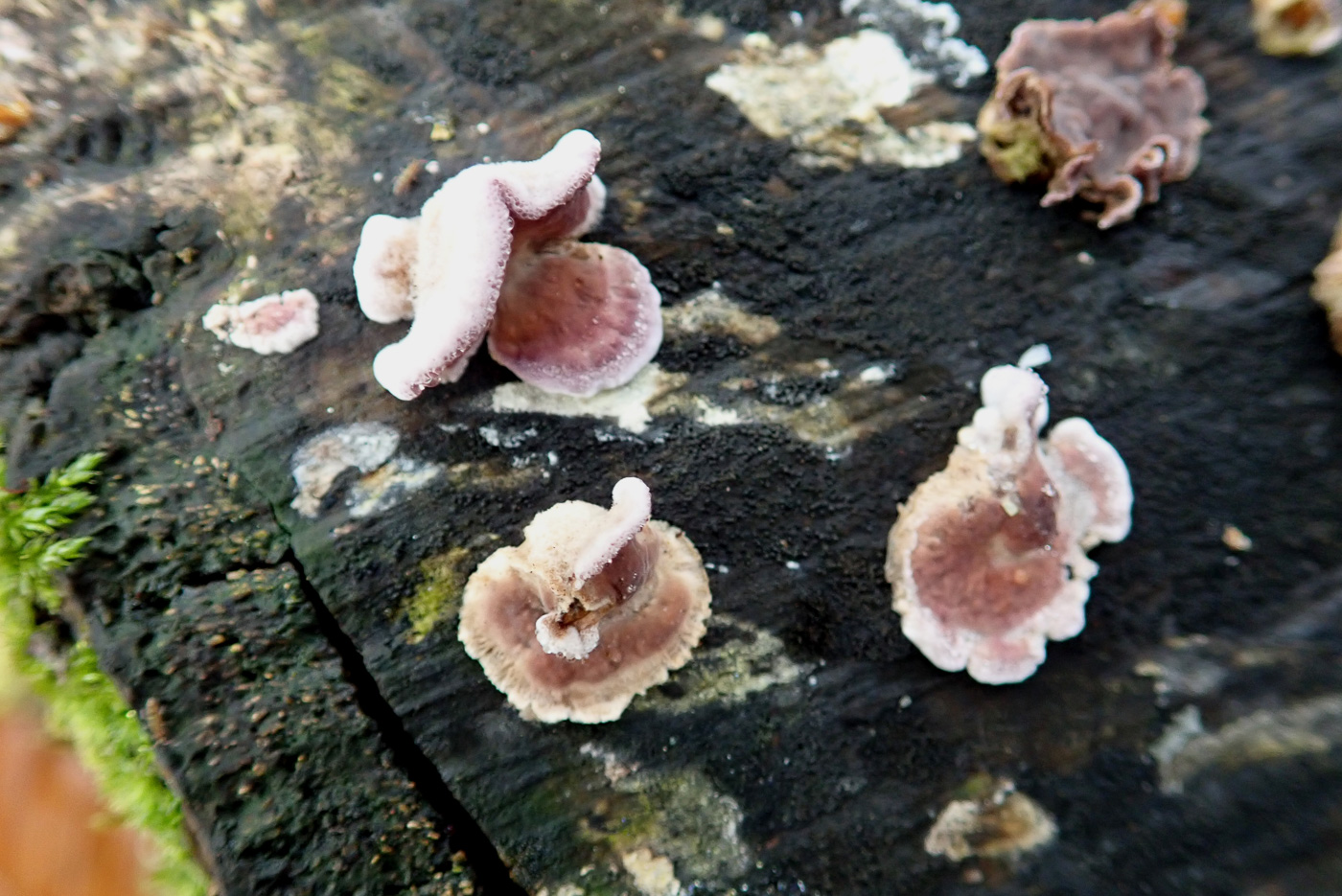
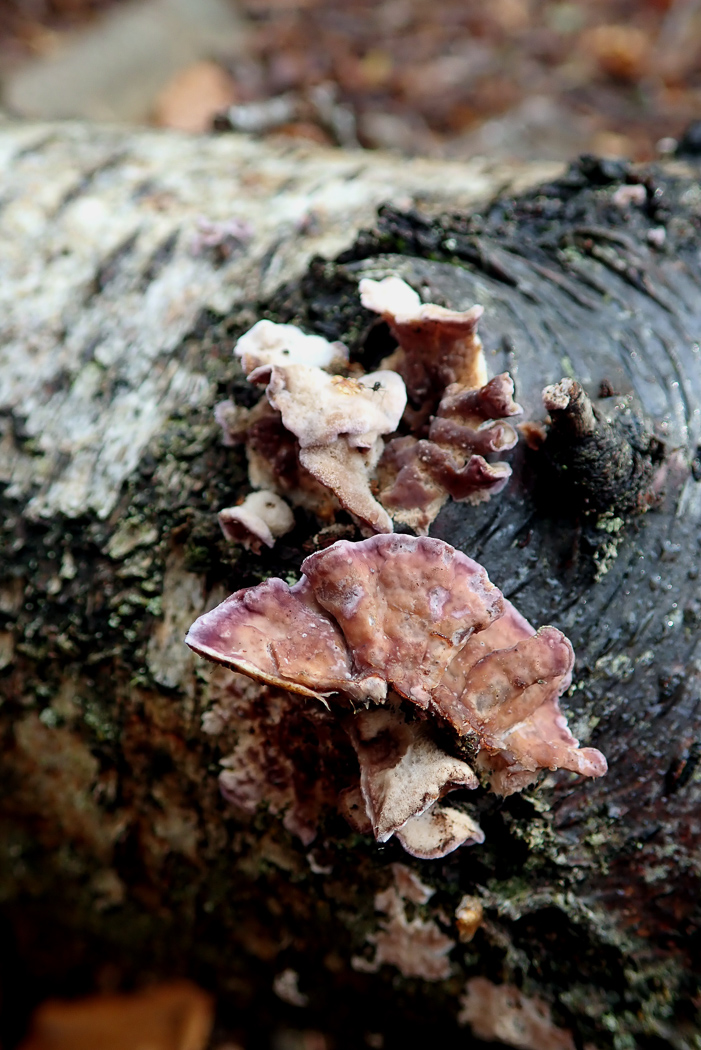 |
November 6th Chondrostereum purpureum (Silverleaf Fungus)
Penny C. found this common small bracket just beginning to develop of fallen Birch in Burnham Beeches. Photo 1 shows it still flat but just beginning to form brackets quite similar to Stereum hirsutum (i.e. with a hairy upper surface and slightly zoned). Photo 2 shows further developed brackets, the central piece upturned to show the diagnostic dark violet smooth underside. This is a species of fallen deciduous wood. If you find similarly coloured small brackets on fallen conifer you probably have Trichaptum abietinum (Purplepore Bracket)!
|
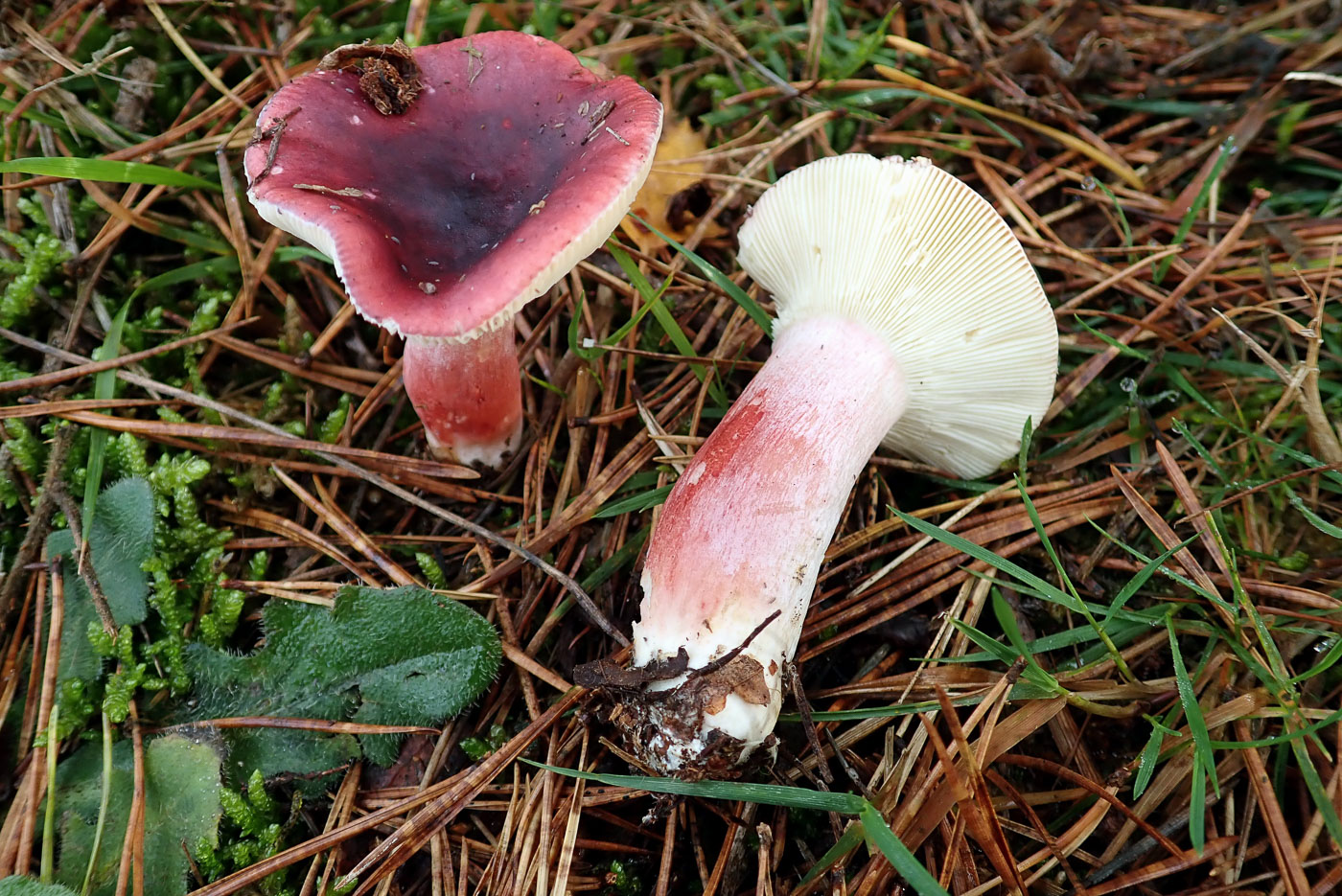
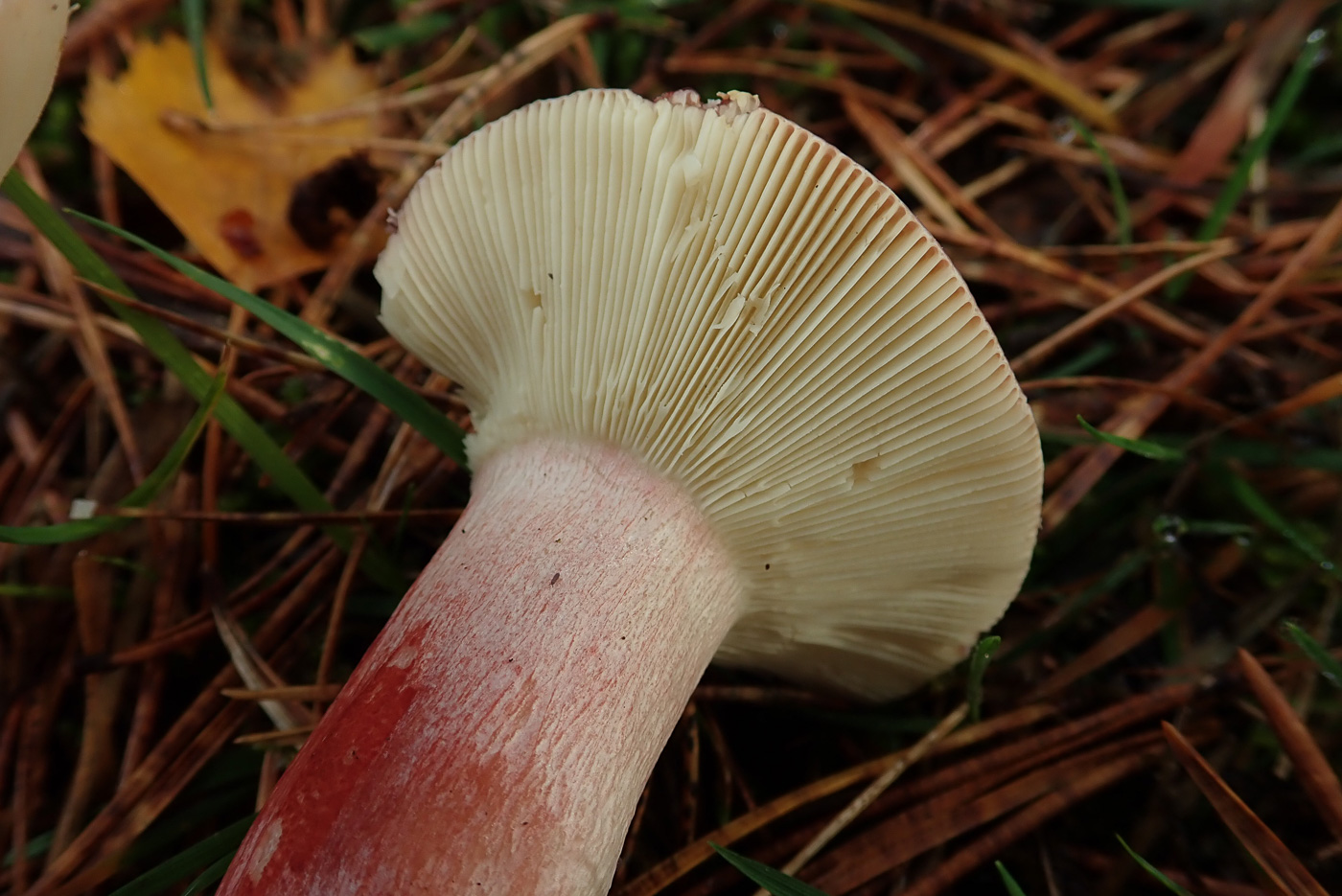 |
November 6th Russula sanguinaria (Bloody Brittlegill)
When Penny C. searched under Pine at Burnham Beeches a few day ago she found several of the red capped Brittlegills which are host specific but missed out on this one, found today by Paul C. It lacks the purple tints of R. sardonia and R. caerulea (both dated Oct 03) and is an intense pink red to blood red, sometimes with palish to white patches or fading at the margin as here. Gills are cream and when mature subdecurrent as here. Stems are variable: sometimes white, sometimes entirely concolorous with the cap as here, or anything in between! This species appears to be new to the site today and we've recorded it at only two other county sites, so though thought to be quite common under Pine that certainly isn't the case locally.
|
November 5th 2020
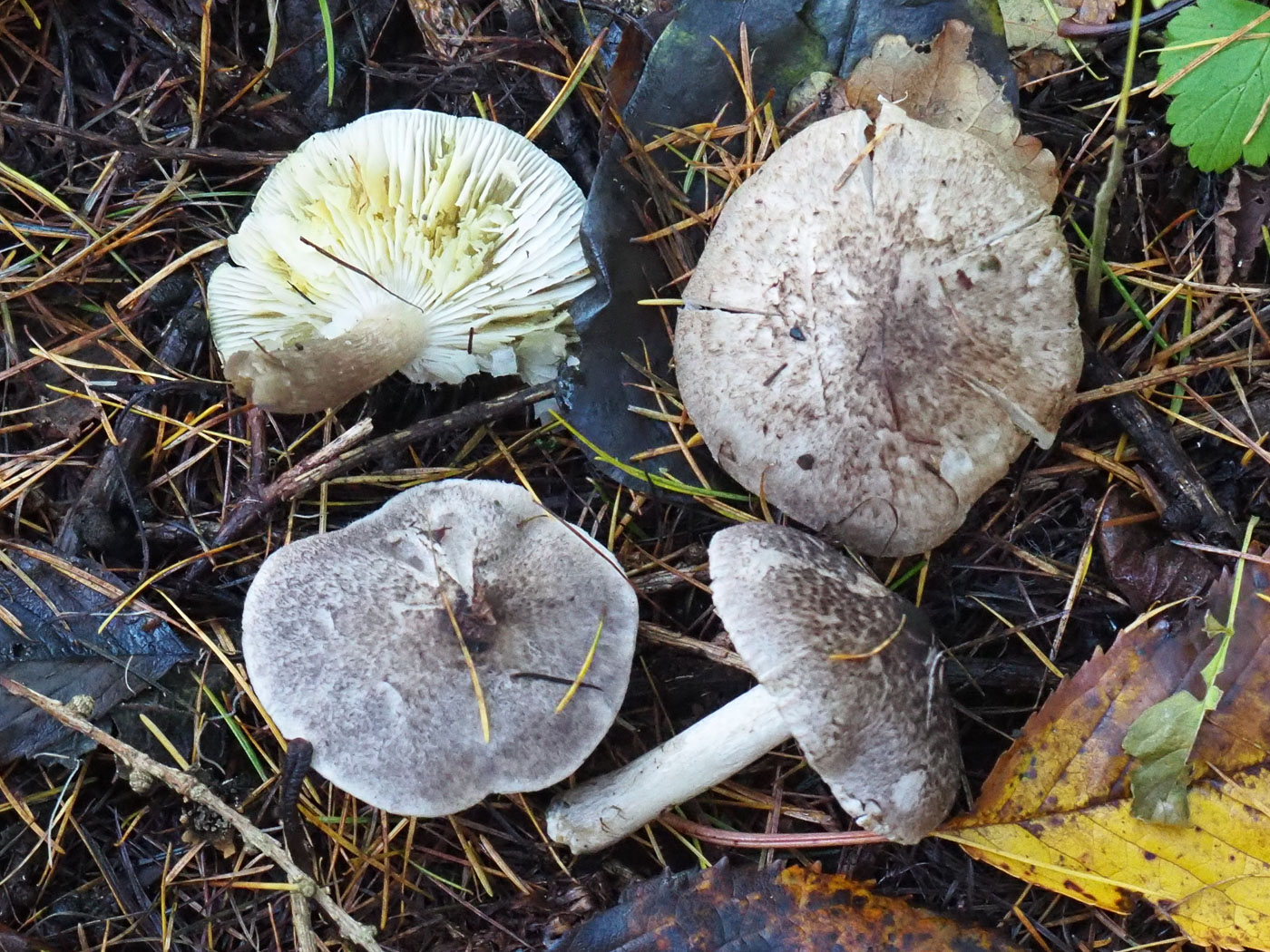
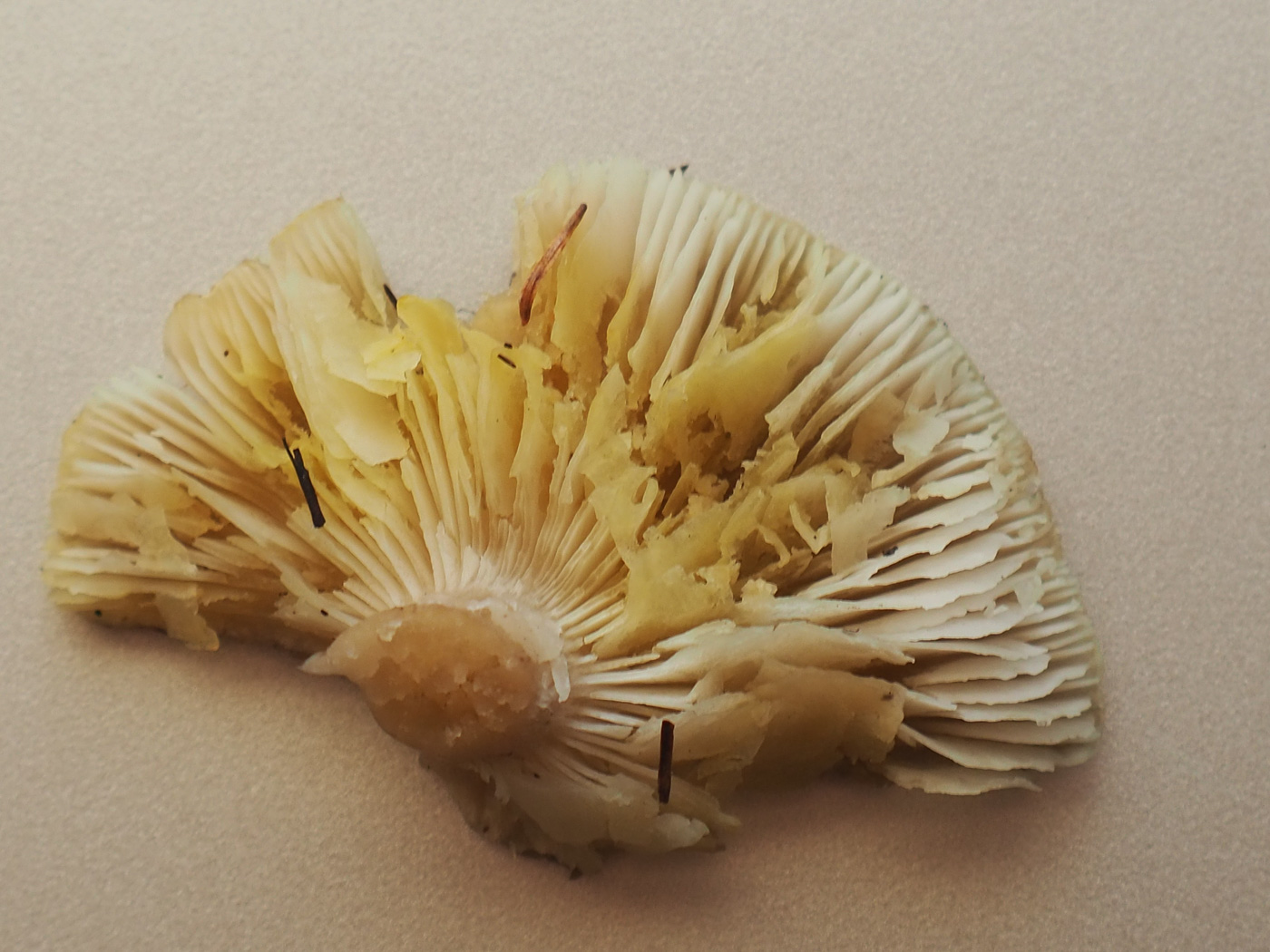 |
November 5th Tricholoma scalpturatum (Yellowing Knight)
John Catterson found and identified this quite common species found under mixed deciduous trees in Tinkers Wood. This is a medium sized Knight with a quite finely scaly grey cap and a strong tendency to yellow in the gills and at the cap margin when mature. This feature helps to distinguish it from the many other grey capped Knights, also it has a mealy farinaceous smell (though a few others also have this smell but do not turn yellow). When found without the yellowing present, however, it is hard to confidently separate it from others.
|
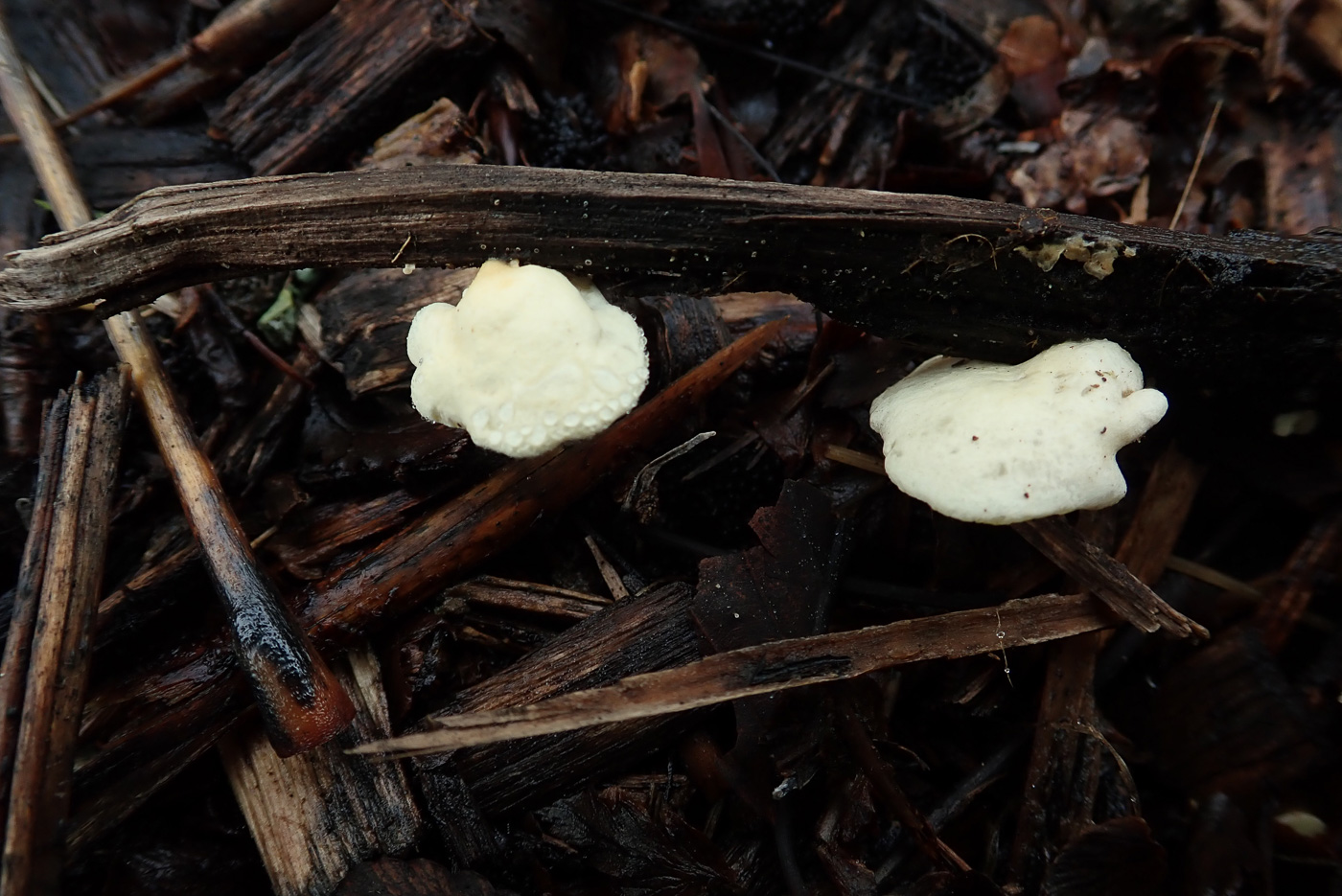
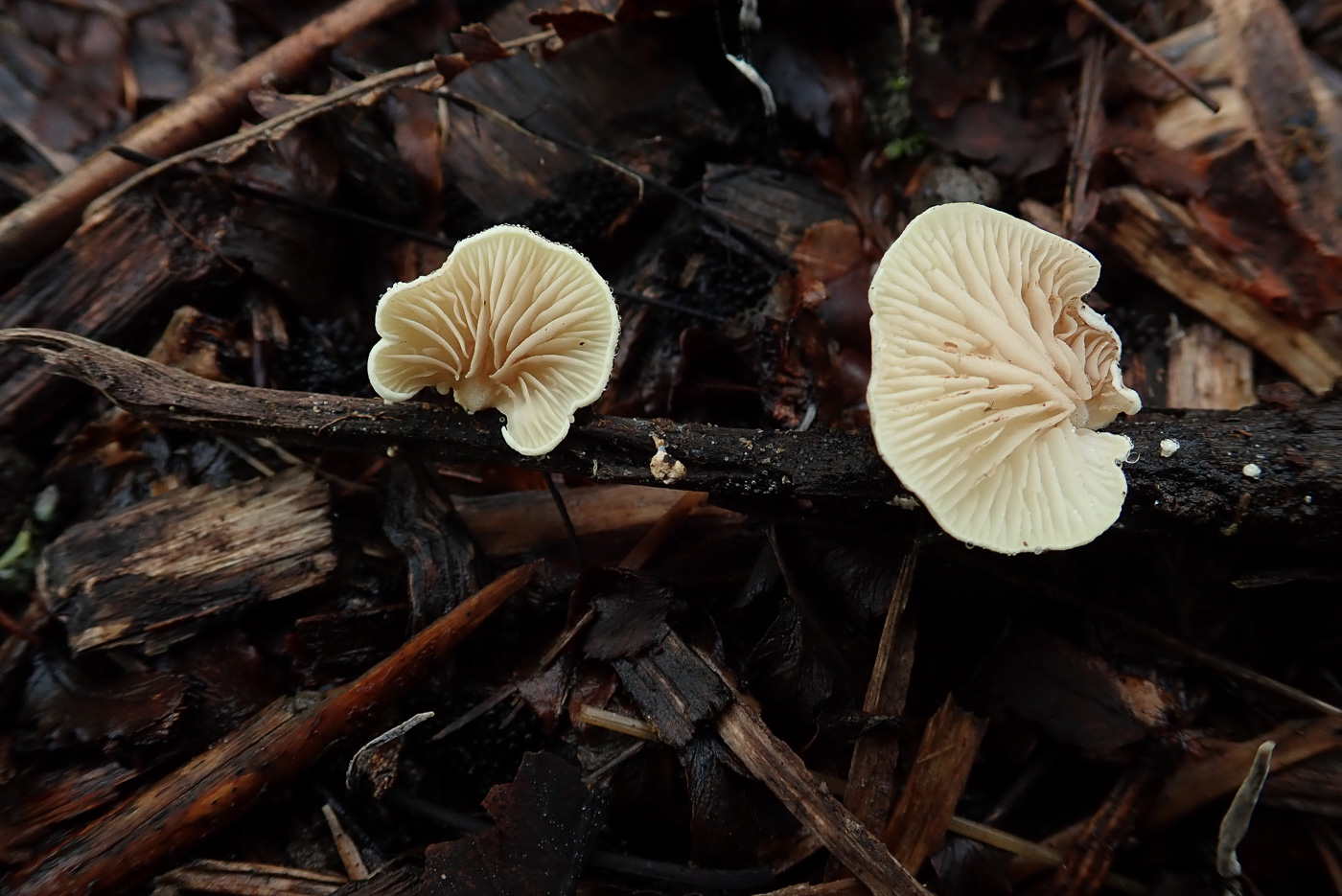 |
November 5th Crepidotus luteolus (Yellowing Oysterling) 
On some woody debris in Gussetts Wood Penny C. found two fruit bodies of a Crepidotus and took it home to work on the offchance that it might be one not yet on our list. Crepidotus is an easy genus to recognise but virtually all species need a microscope to name further than that. Spore size, shape and ornamentation is critical, usually needing to be viewed at x 1000 together with other cells on the gill, and today's collection keyed out neatly to C. luteolus, quite a common species which tends to become tinged with yellow as it ages - not today though!
|
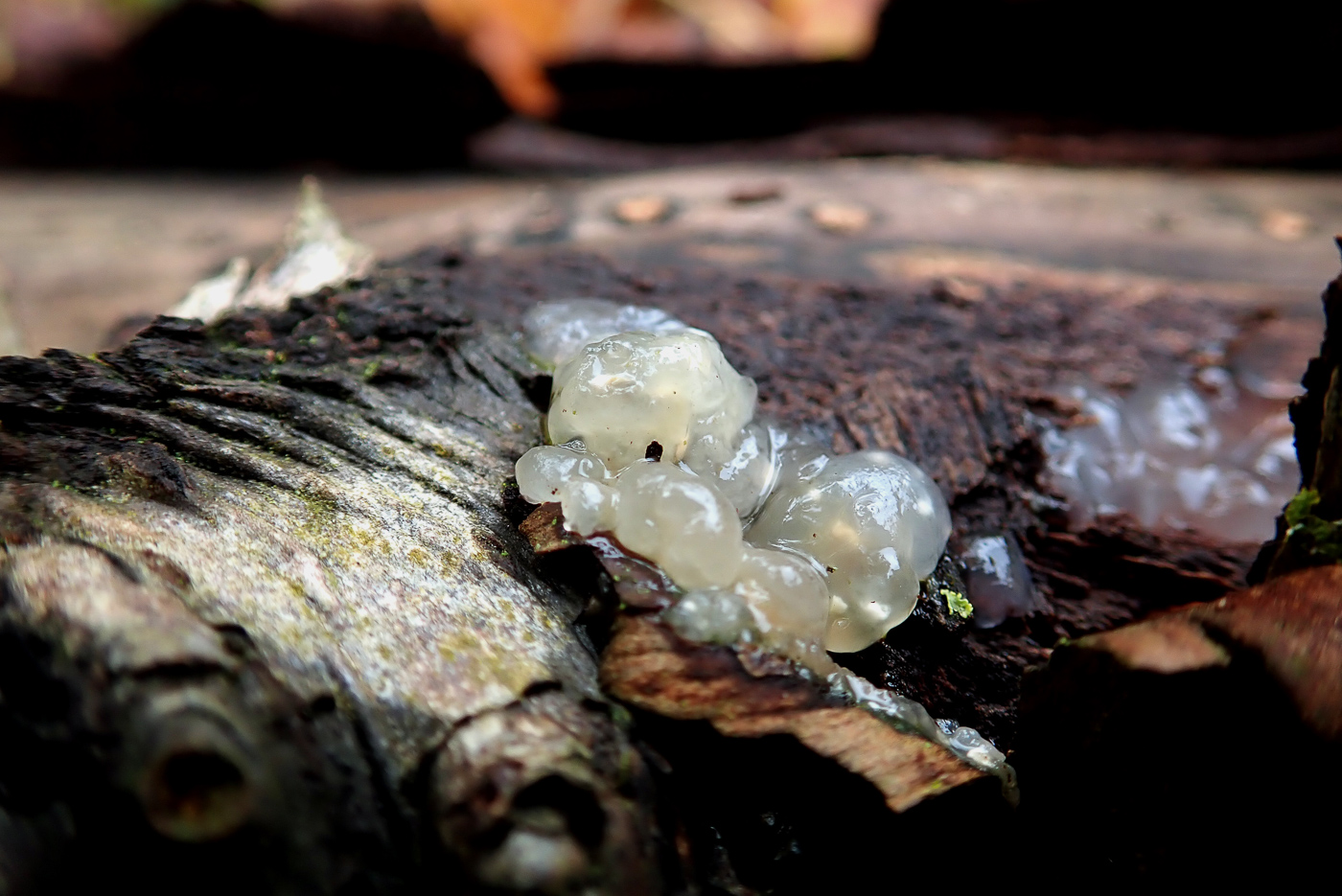
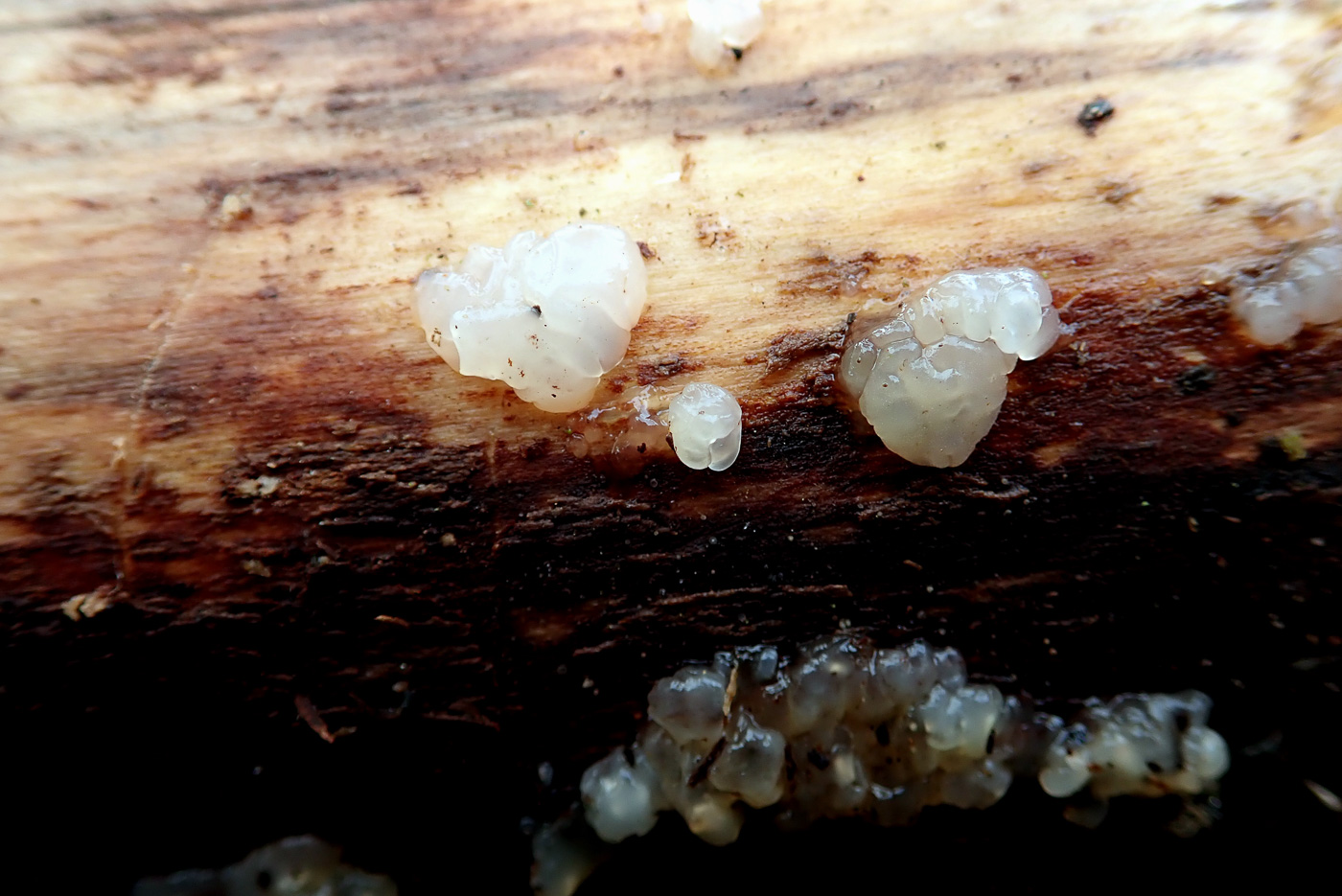 |
November 5th Exidia nucleata (Crystal Brain)
Penny C. found quite a few examples of this species on fallen Beech in Gussetts Wood. One of the Jelly fungi, it forms roundish whitish translucent gelatinous lumps up to about 1 cm across and contains a central core of calcium, hence the reference to a nucleus in the species name. This nucleus can just about be seen in the large central 'blob' in photo 1. Commonly found on fallen branches, Beech in particular.
|
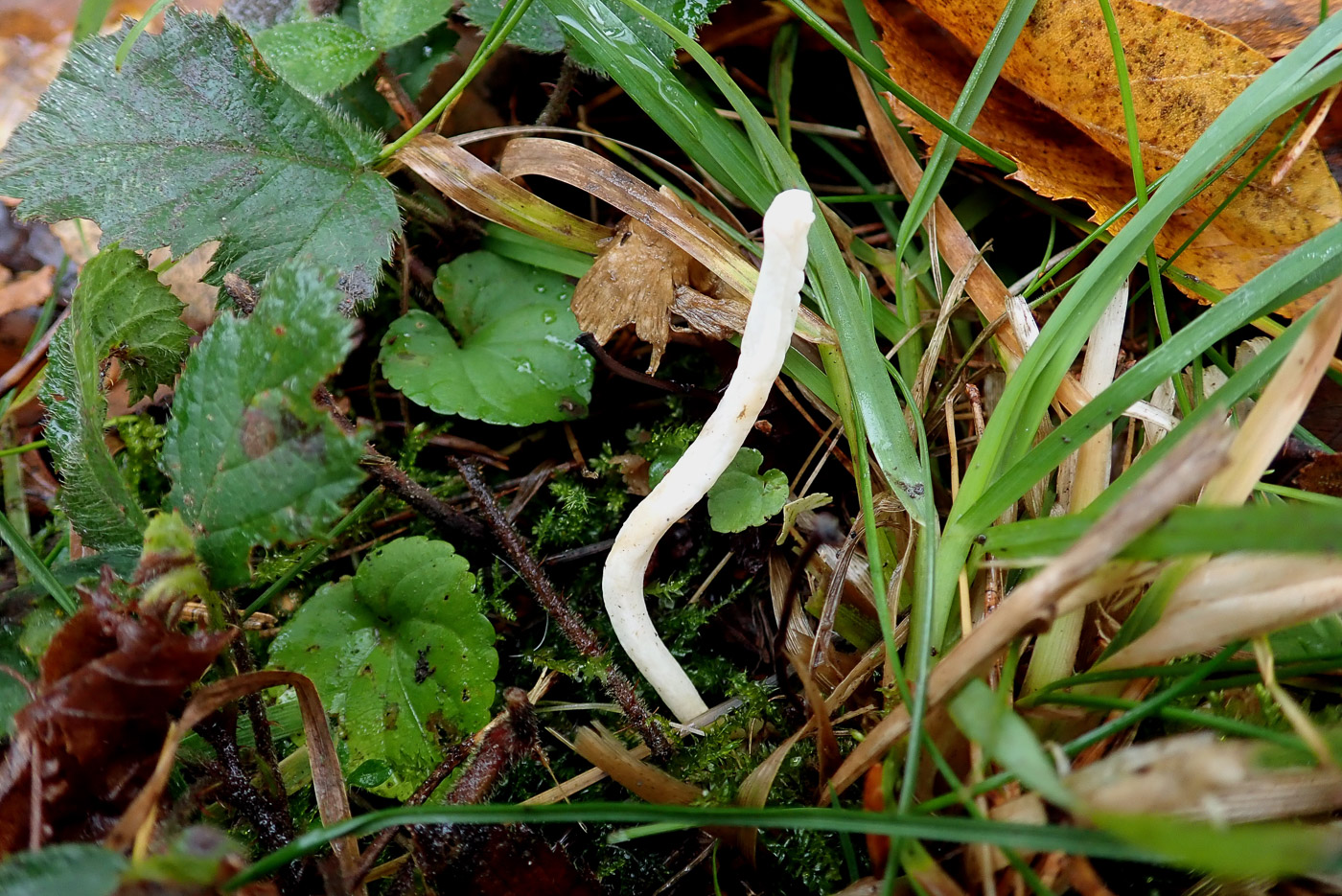 |
November 5th Clavulina rugosa (Wrinkled Club)
Penny C. found just this one club in longish grass under Pine in Turville Heath. Normally not an uncommon species, maybe it's just making an appearance so possibly one to look out for now. Compared to both C. cinerea and C. coralloides (see photos dated Oct 12 and Oct 14) it is taller and thicker, up to 8 cms high and often single as here or with just a suggestion of branching, if so then rather lumpy and unevenly irregular.
|
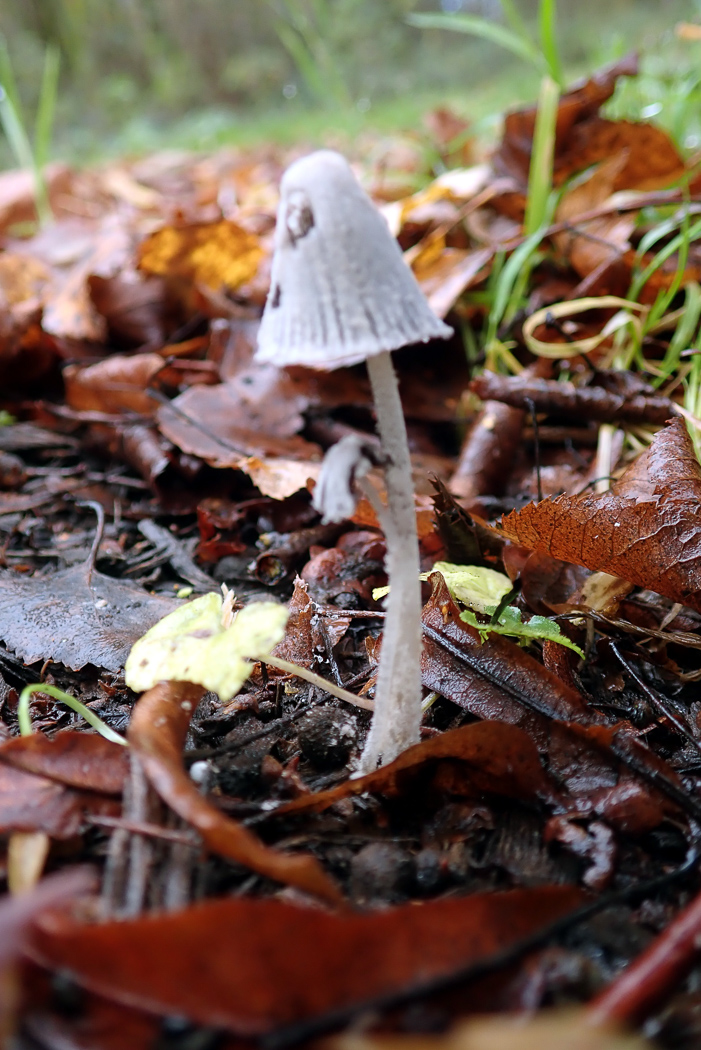
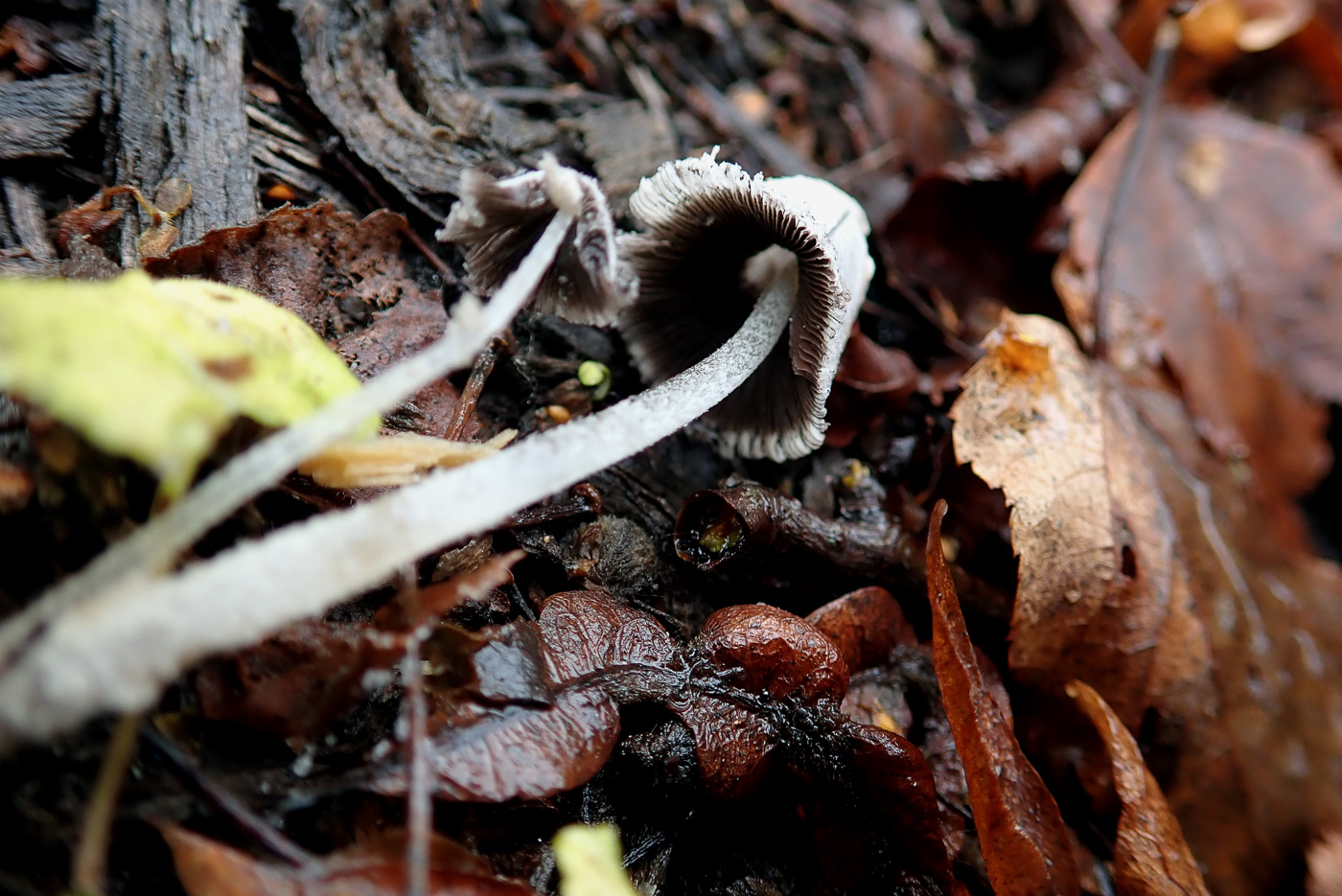 |
November 5th Coprinopsis semitalis (an Inkcap with no common name) 
Whilst searching for fungi on a well rotted woodchip pile in Turville Heath, Penny C. noticed this pretty little Inkcap. Many of this genus are rather shortlived but luckily this one survived in tact long enough to work on at home. It stood about 6 cm high and the strongly campanulate cap was about 1 cm tall and covered in a thick layer of white veil which she knew would be key to identification. Sure enough together with various other microscopic details the veil cells confirmed the species, one for which we have only a few county records.
|
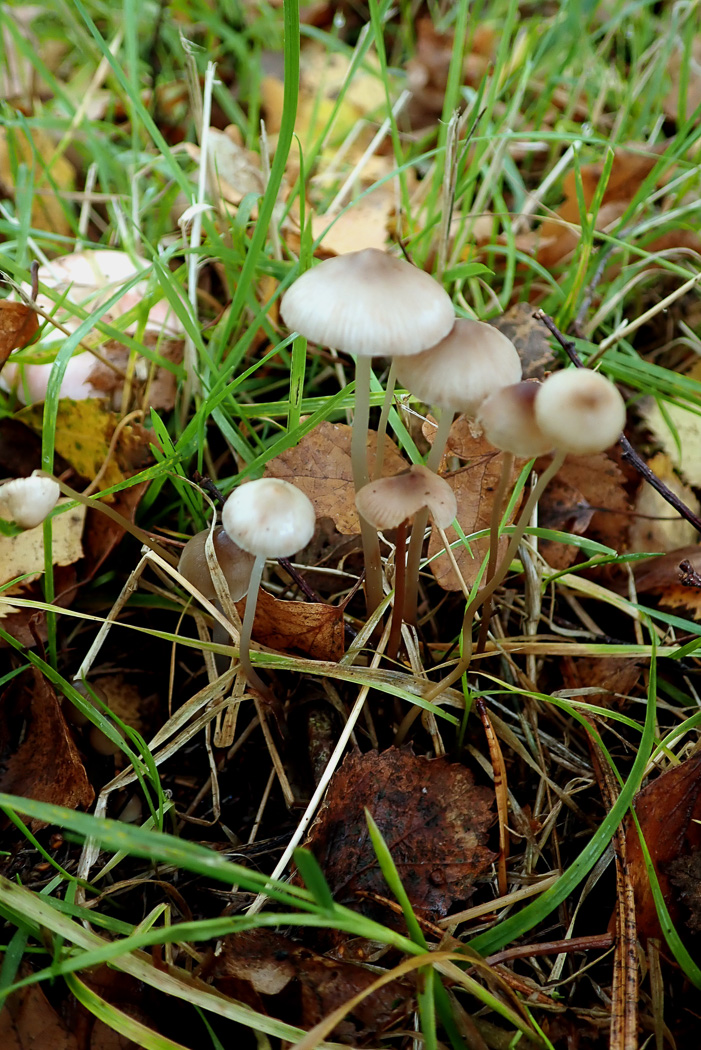
 |
November 5th Mycena vitilis (Snapping Bonnet) 
This species of Bonnet, found by Penny C. in longish grass under trees at Turville Heath, is one of our commonest yet not easy to separate from the many similar nondescript medium sized brown capped species. It grows in soil or woody litter under mixed trees or in grass as here and its one redeeming feature is that the stem though long and thin is remarkably sturdy and breaks with a faint snap, hence its common name. However, this is not foolproof and to identify with certainty it is necessary to look at the cells on the gill edge.
|
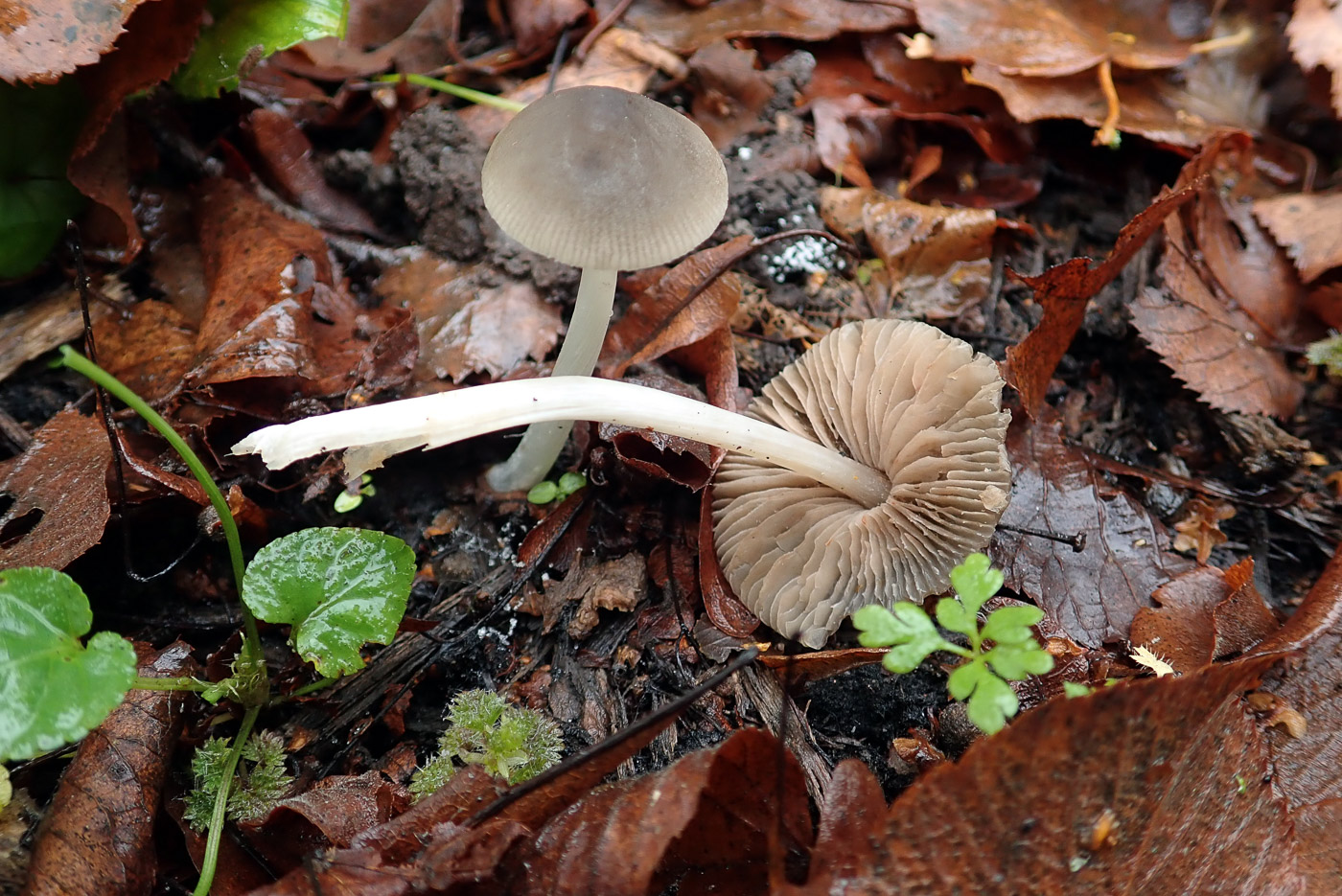
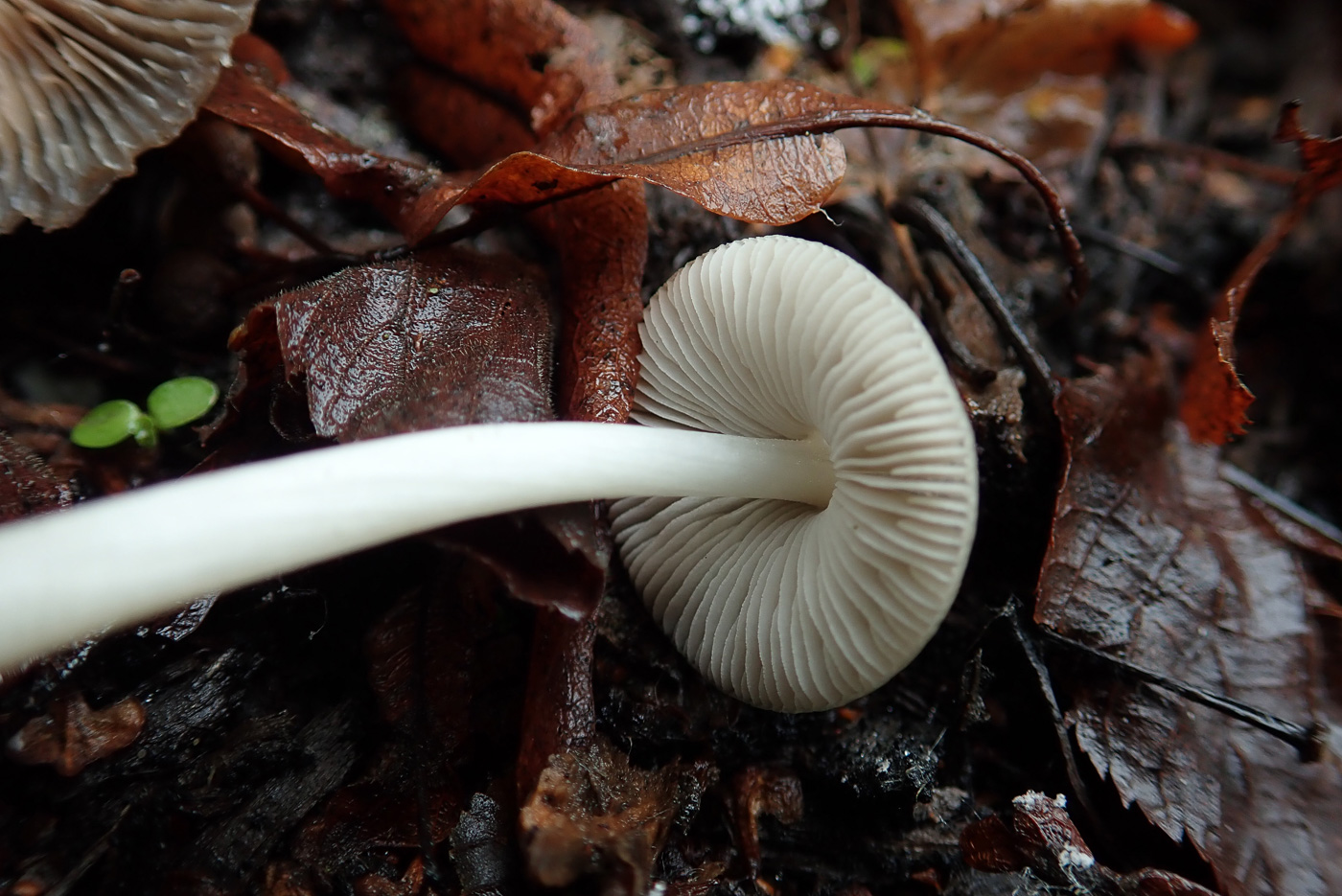 |
November 5th Pluteus nanus (Dwarf Shield) 
Penny C. found this species fruiting in a well rotted woodchip pile at Turville Heath. We seem to have found surprisingly few species of Pluteus this Autumn with several of the commoner species still not on our list. P. nanus is not uncommon and of small to medium size for the genus, the cap can be grey as here or more brown and is just slightly rugulose (wrinkled) in the middle compared to the similar P. phlebophorus which is strongly rugulose (see photos dated Oct 12). Note the typical free gills (photo 2) of the genus which are still pale but will become distinctly pink in age.
|
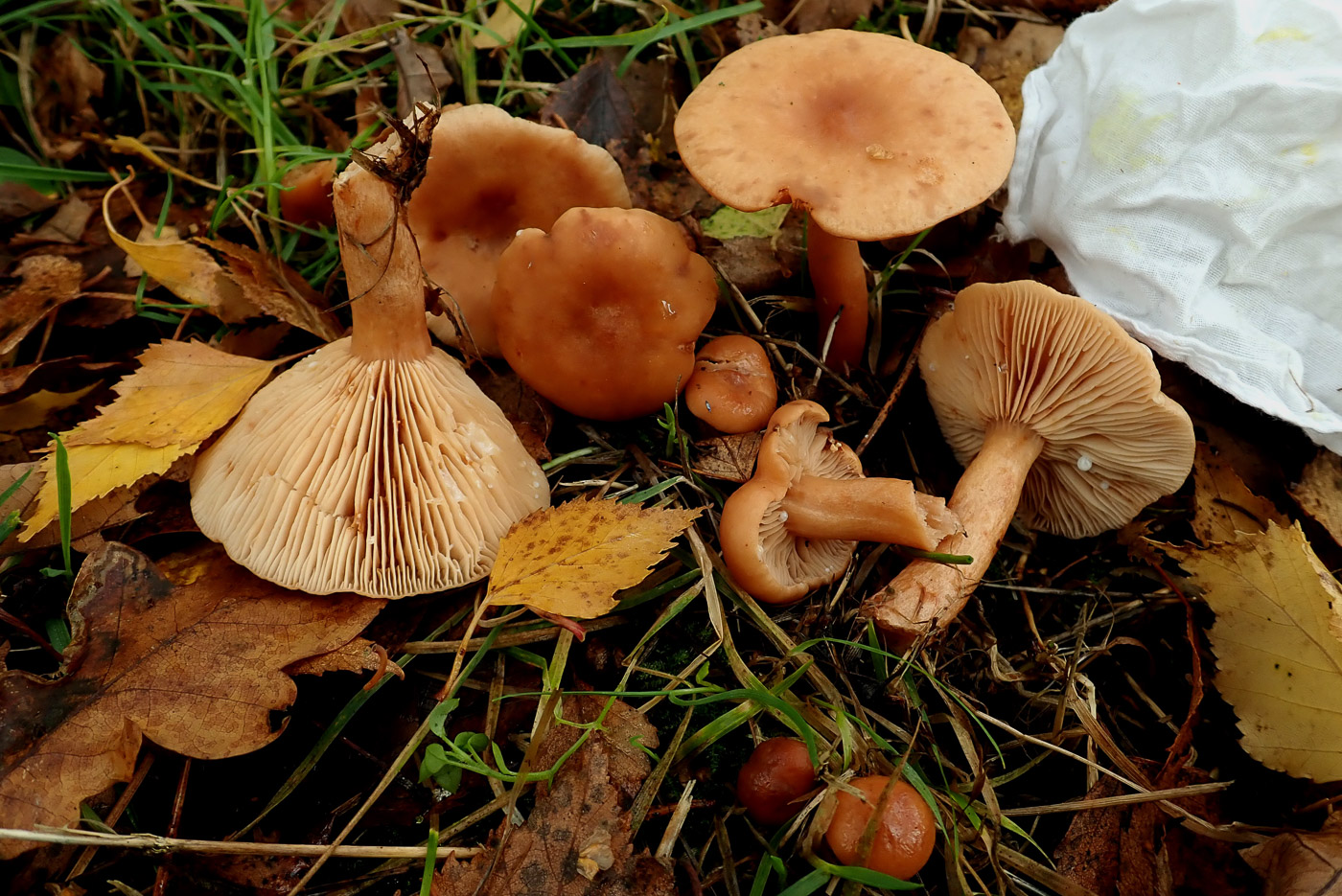
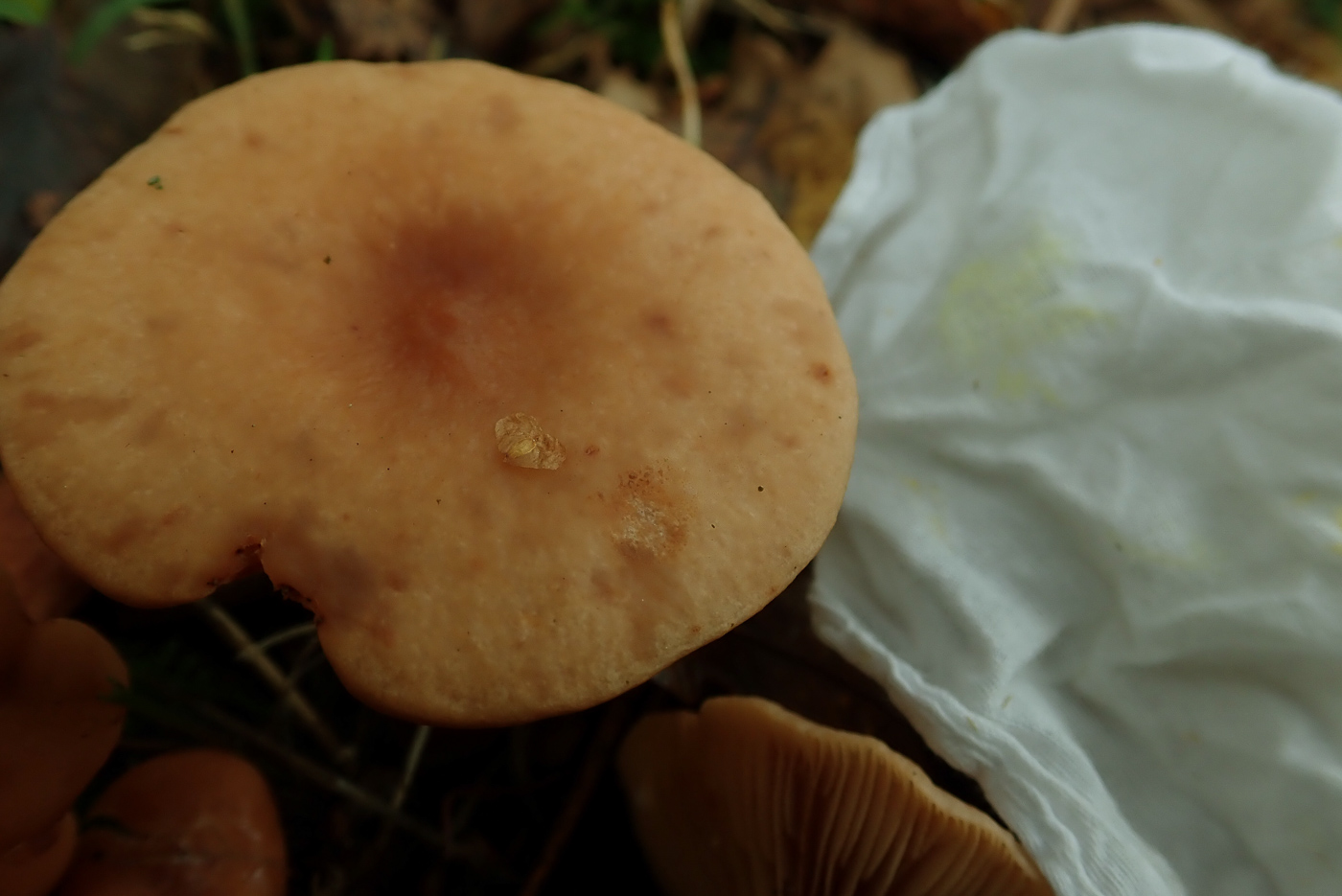 |
November 5th Lactarius tabidus (Birch Milkcap)
Penny C. found several fruit bodies of this common Milkcap in longish grass under Birch at Turville Heath. It is a medium sized soft fleshed Milkcap with a reddish tan coloured cap which fades with age, often having a slightly sunken centre with a small umbo. Compare with the extremely similar L. subdulcis dated Oct 01 where Penny's notes cover the differences to look out for. She attempted to include in the photos here her hankie with the yellow stain from the milk which is a diagnostic feature, but only fairly successfully!
|
November 4th 2020
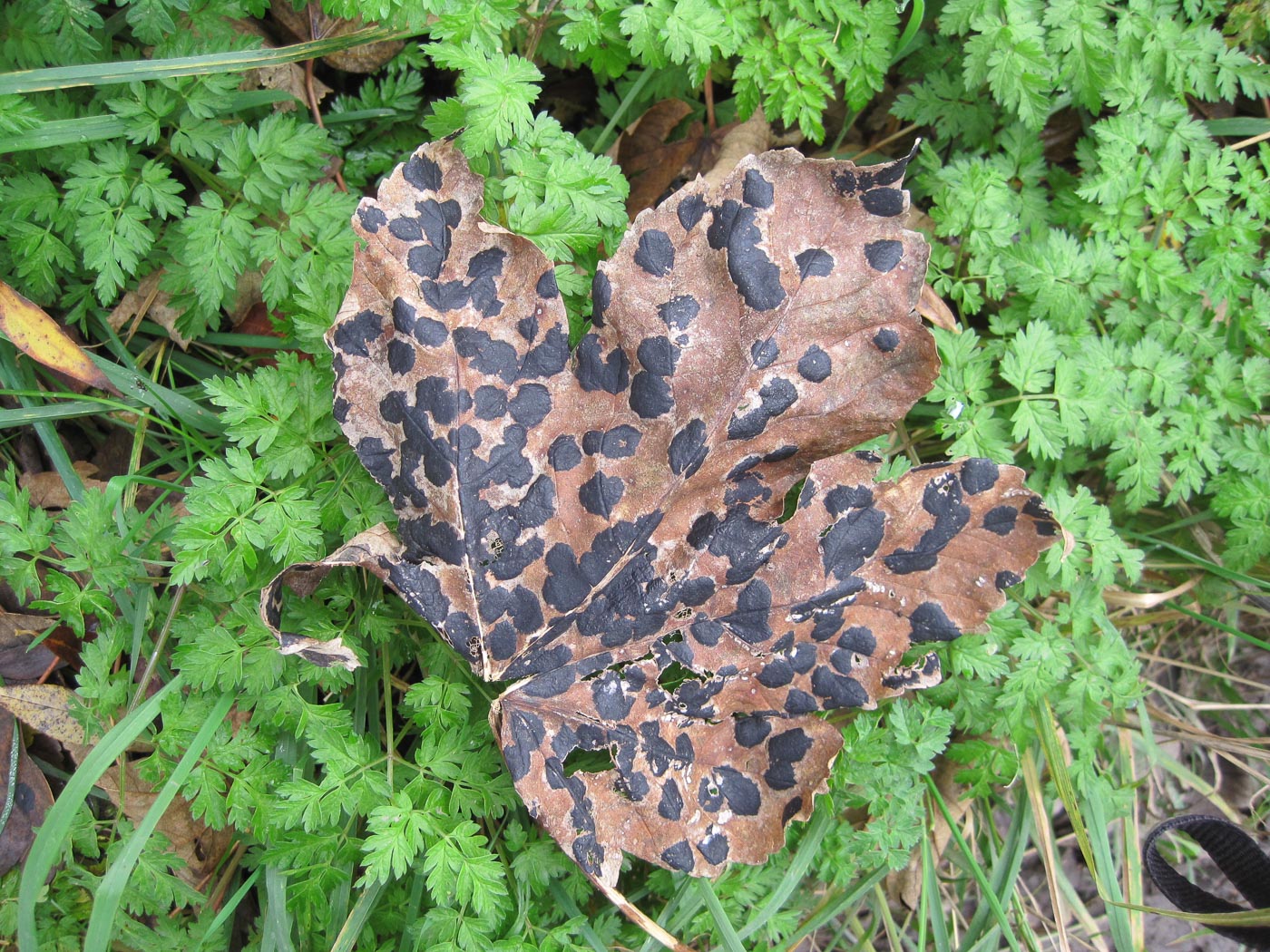 |
November 4th Rhytisma acerinum (Sycamore Tarspot)
Joanna Dodsworth picked up this fallen Sycamore leaf in Brill Common as it was such a good example of this very common Ascomycete literally covering the upper surface. It is the exception rather than the rule to find a Sycamore tree without this apparently harmless fungus in evidence on its leaves. They appear from July onwards on living leaves forming their typical black patches which do not release their spores till the following spring.
|
November 3rd 2020
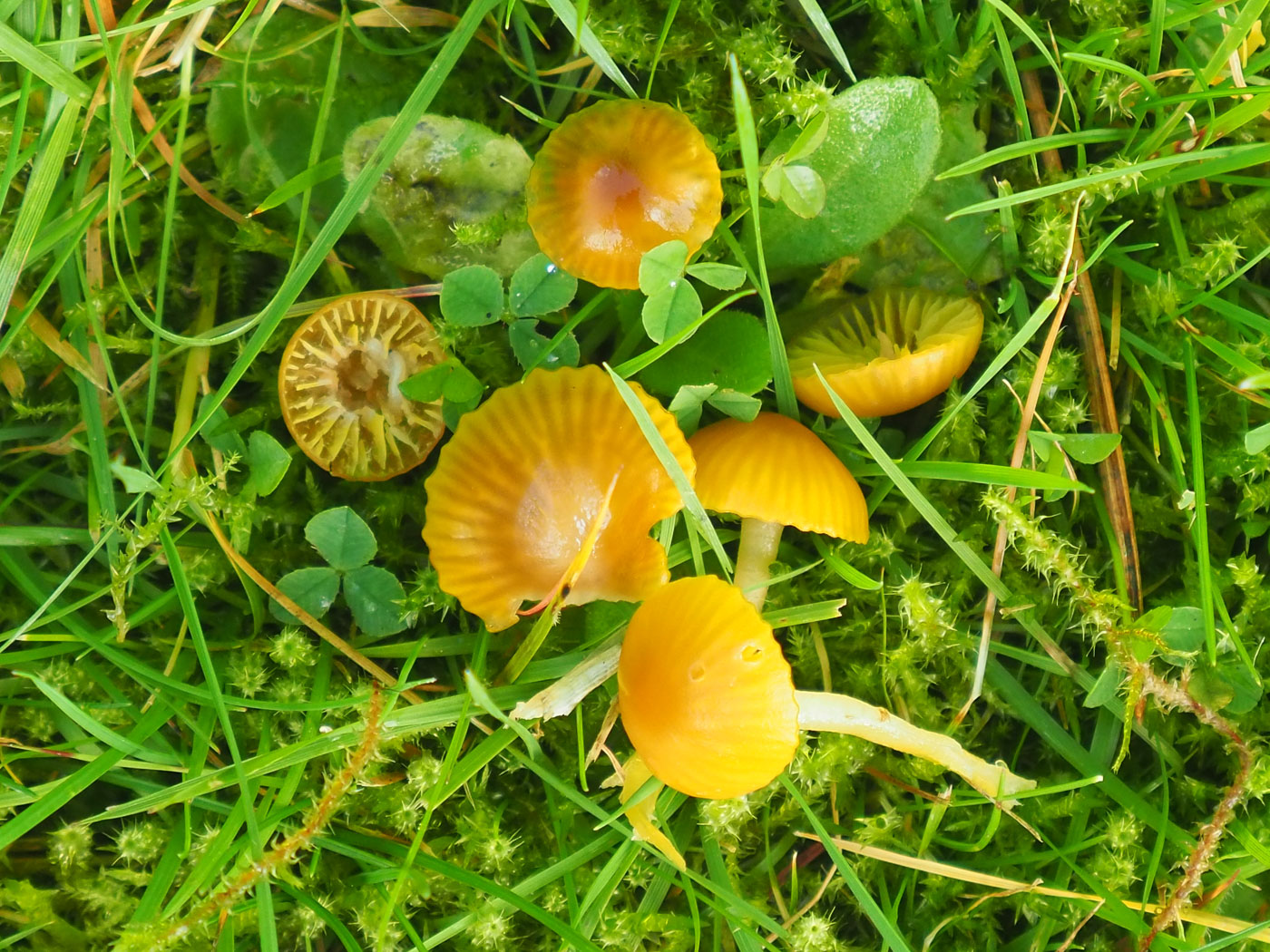 |
November 3rd Hygrocybe glutinipes ((Glutinous Waxcap) 
Yet another species for our growing list of Waxcaps, John Catterson found this very slippery collection in Prestwood Churchyard. This is a small orange yellow Waxcap and separated from other yellow species by the whole fruitbody being really slimy making it difficult to pick up as John found today! He also checked the spores which are notably thinner than in other similarly coloured species.
|
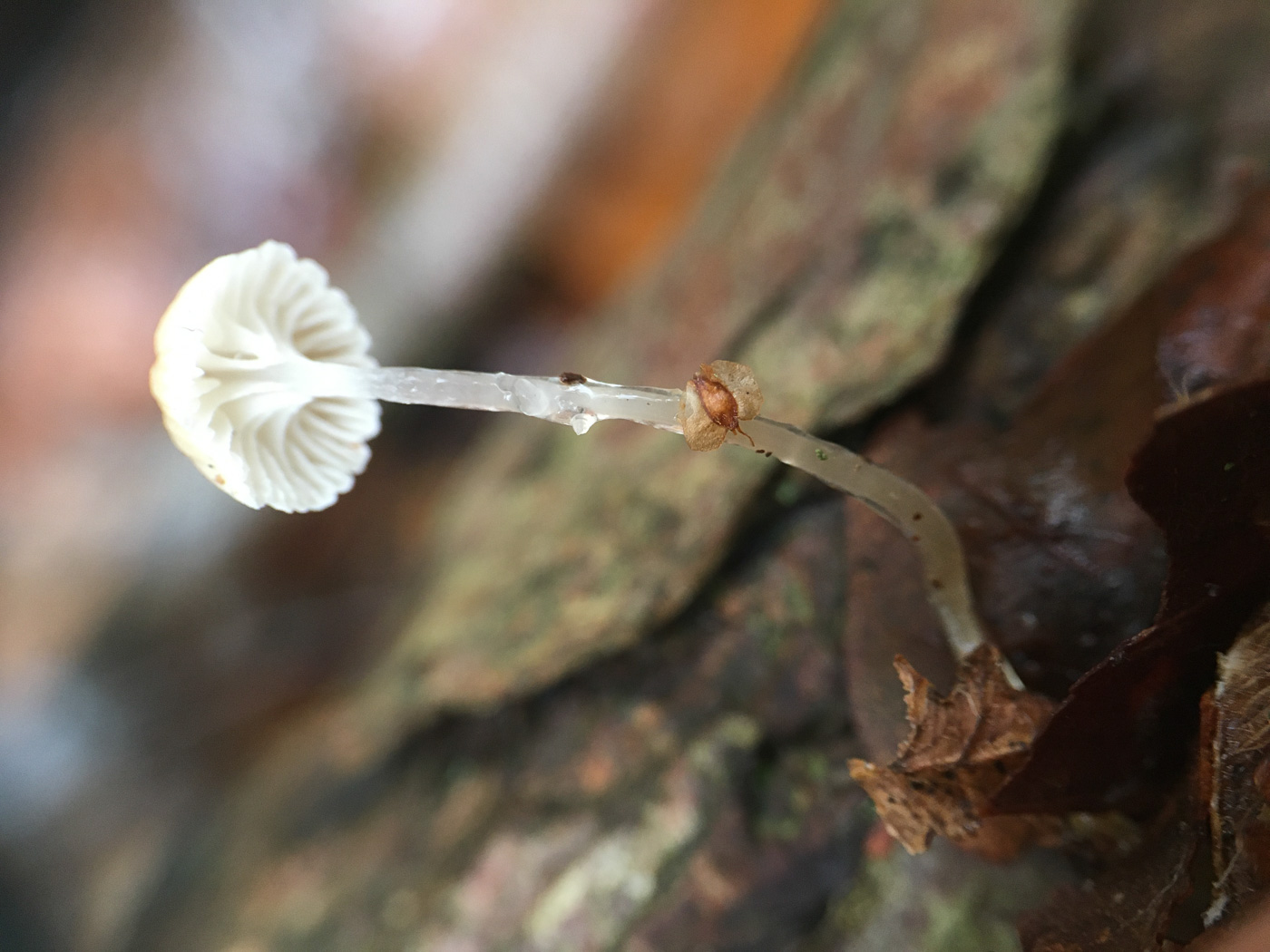 |
November 3rd Mycena rorida (= Roridomyces roridus) (Dripping Bonnet)
Russell Ness noticed this single specimen growing in vegetation in Egypt Woods, Burnham Beeches. Here is more proof that this particular part of S. Bucks has acidic soil in a predominantly calcareous area, this Bonnet being one which mainly occurs in heathland and acid woodland. On first glance it is a typical pale capped Bonnet having decurrent gills but the stem is covered in a layer of slime (even more apparent after rain) which is the diagnostic field character. Look for it on bramble stems in thick vegetation.
|
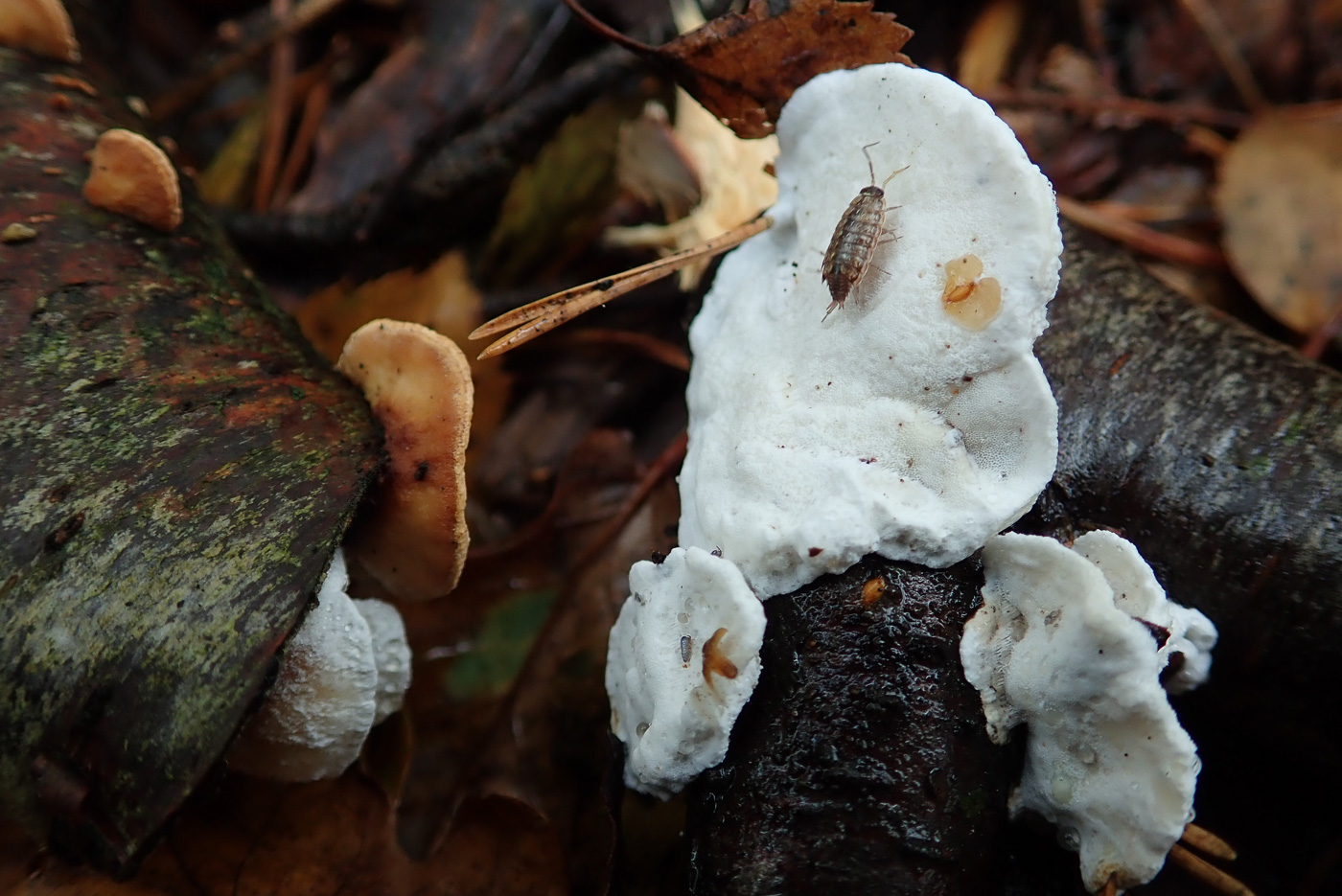
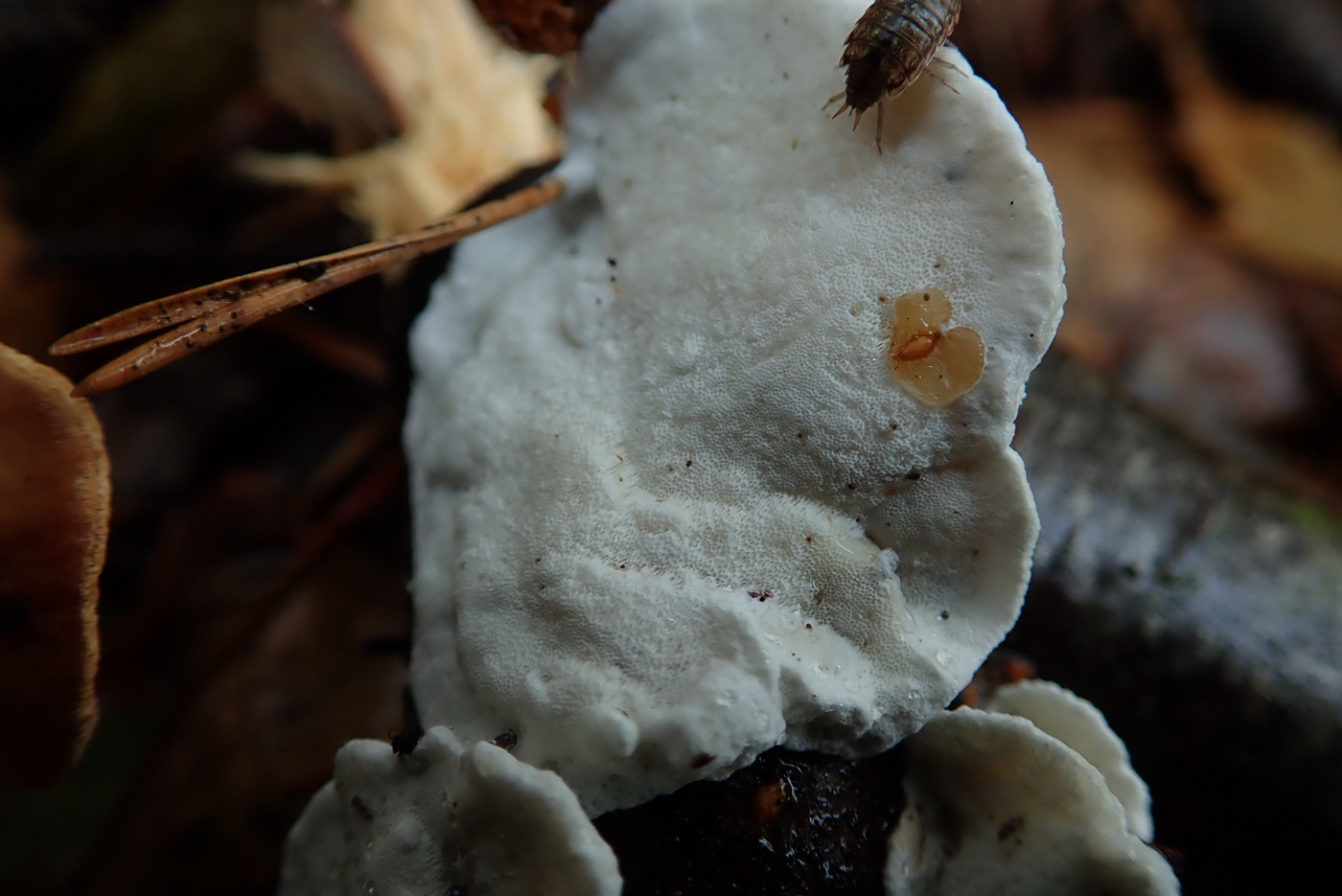 |
November 3rd Skeletocutis nivea (Hazel Bracket)
On a deciduous stick in Burnham Beeches Penny C. found this species, notable for its white tiny pores - hardly visible to the naked eye but just discernable in photo 2 together with the wood louse! Usually found growing resupinate (flat) so just showing its white surface, it sometimes forms small brackets which in time become brown, seen in photo 1. It is quite soft and easily detached from its substrate which is not necessarily Hazel as implied in the common name: it is common on many different hardwoods.
|
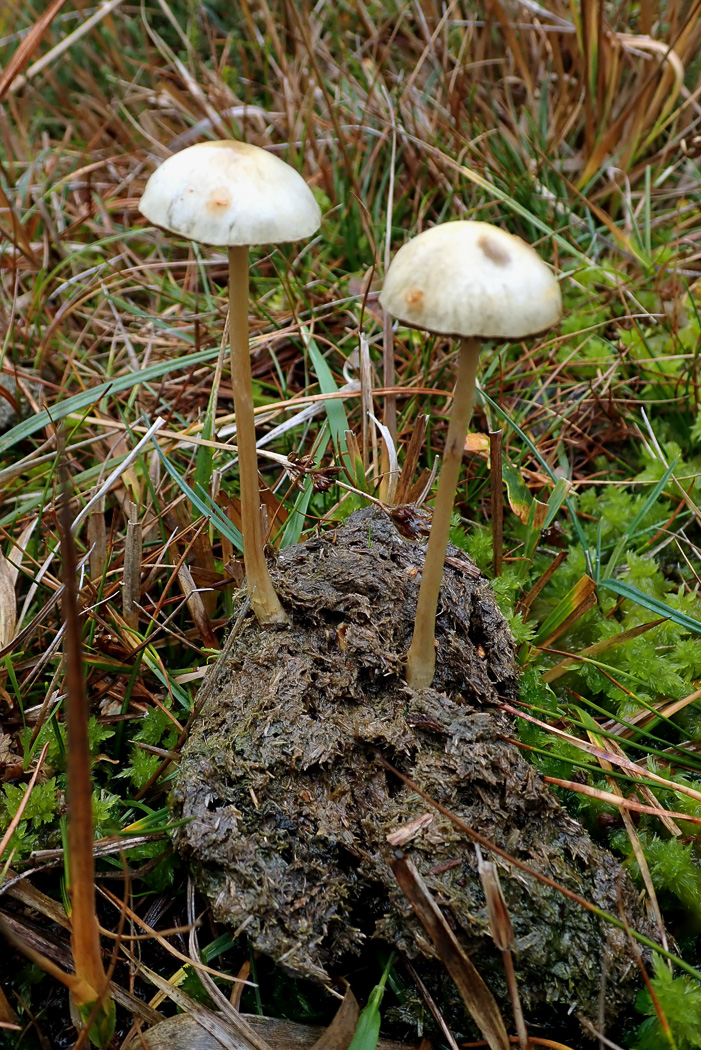
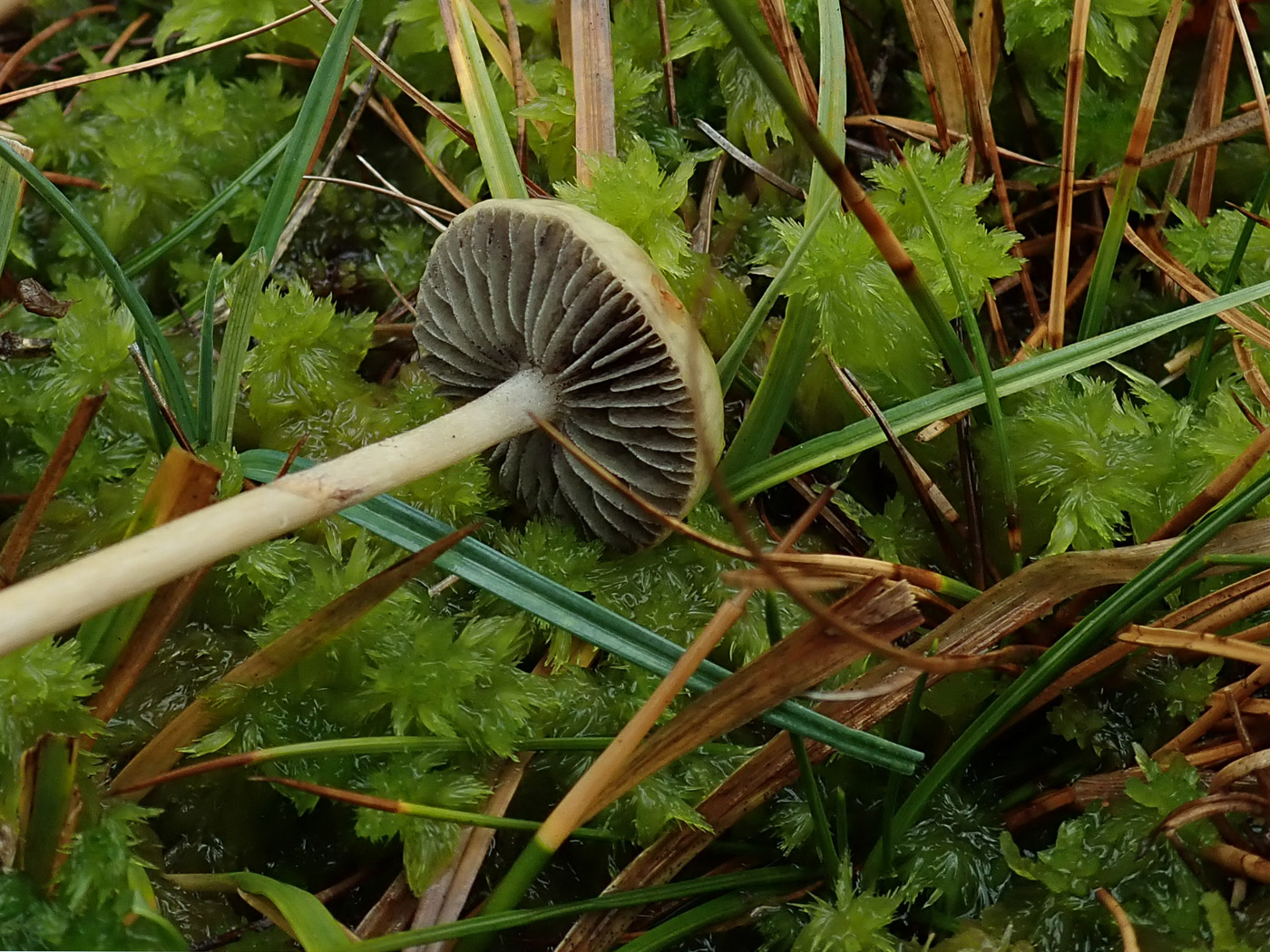 |
November 3rd Stropharia semiglobata (Dung Roundhead)
We have almost no dung fungi amongst our species list (there are many), but the cows had been busy in the Mire at Burnham Beeches where Penny C. found this common species - given its chosen substrate. Caps are pale, rounded and also sticky (as with most members of this genus), gills are grey and somewhat ventricose (convex) and stems are long in proportion to the cap and have a ring which cna quickly disappear, especially in wet weather. Not surprisingly, therefore, there's only the smallest hint of a ring zone visible in photo 2 here.
|
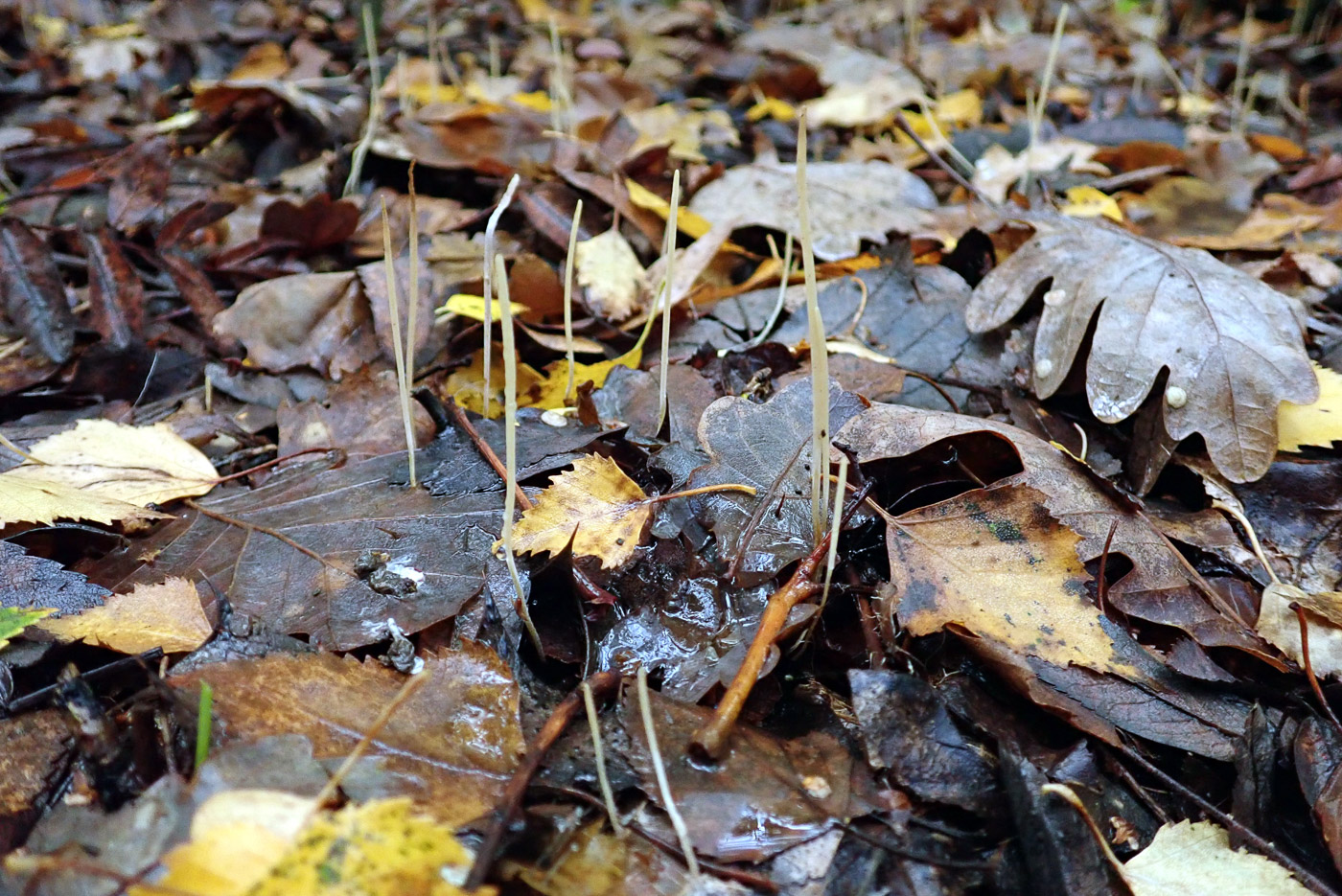
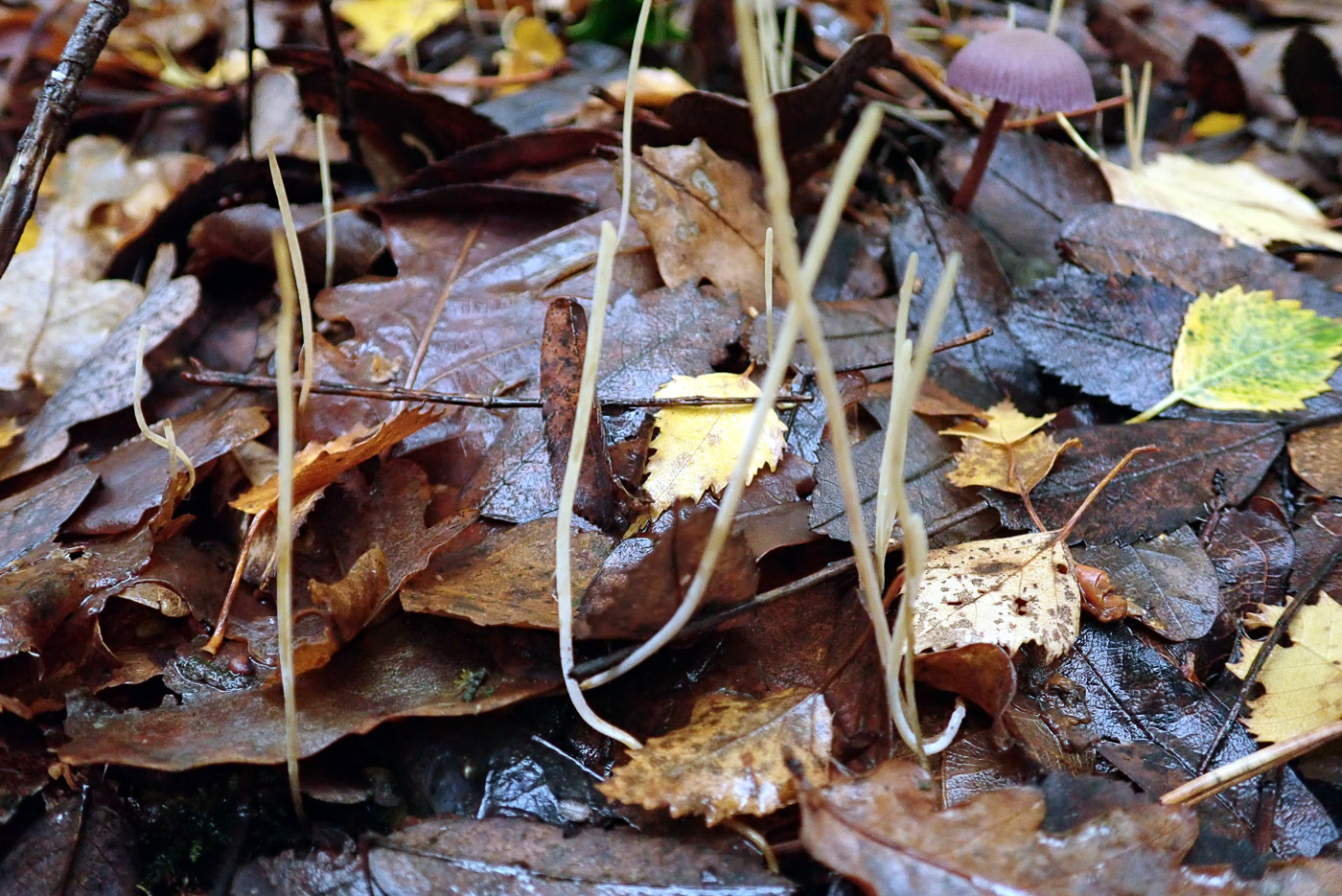 |
November 3rd Typhula juncea (Slender Club)
Another species at Burnham Beeches noticed by Penny C. by chance, this was fruiting in good numbers (as is usually the case when one finds it) in general woodland litter. It tends to grow in large troops rather than in tight clusters and fruit bodies are less than 1 cm wide but can get to 12 cms tall. The species name juncea refers to its rushlike growth rather than to any connection with that plant as substrate.
|
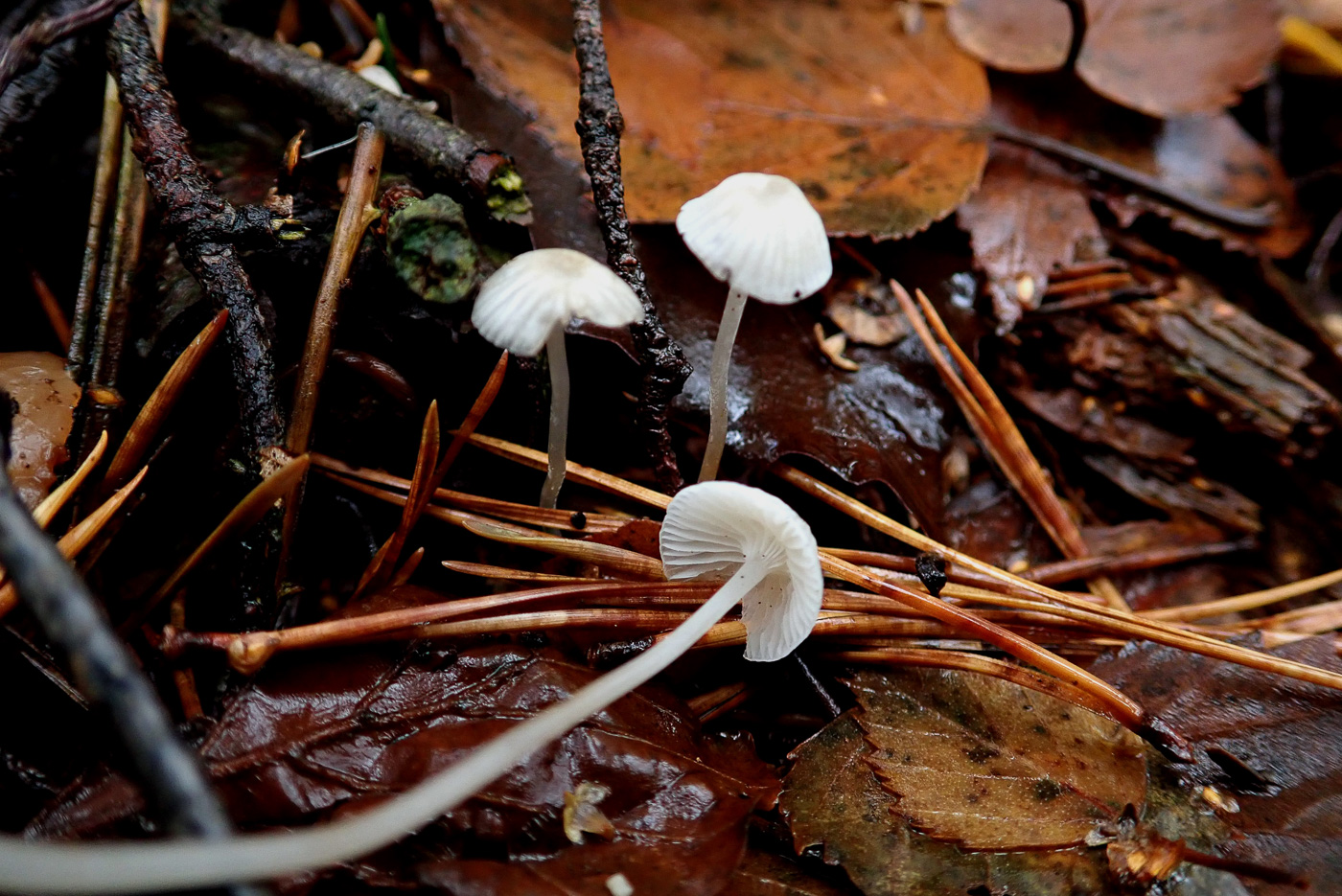
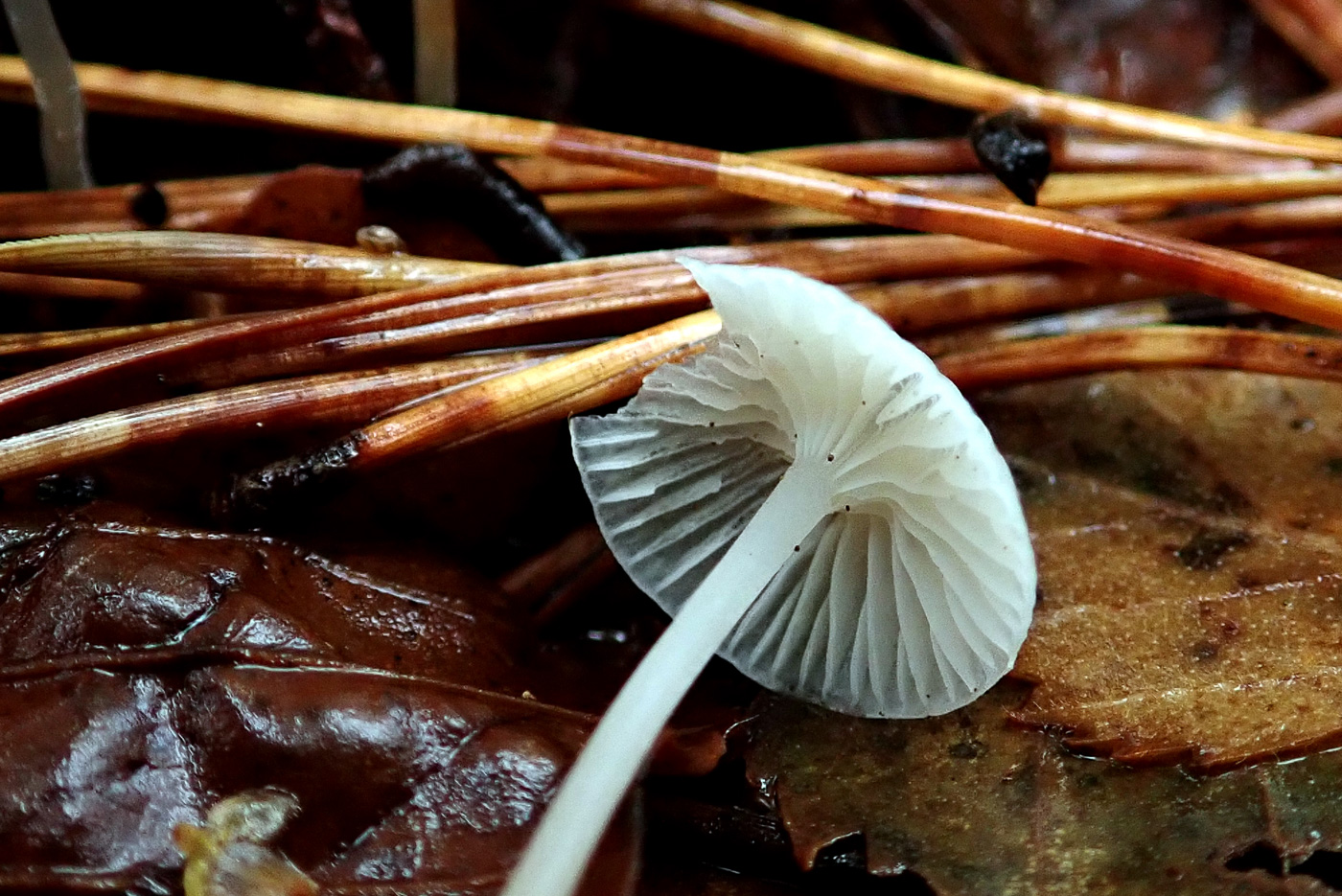 |
November 3rd Mycena cinerella (Mealy Bonnet)
One of many Pine associating species found today by Penny C. in Burnham Beeches, this small to medium Bonnet is not uncommon given plenty of needle litter though surprisingly appears to be new to the site. Two redeeming features to notice in the field make it an easy one to recognise given this particular substrate: the crowded but clearly decurrent gills and its strong smell of flour (known as a mealy smell and frequently encountered in fungi).
|
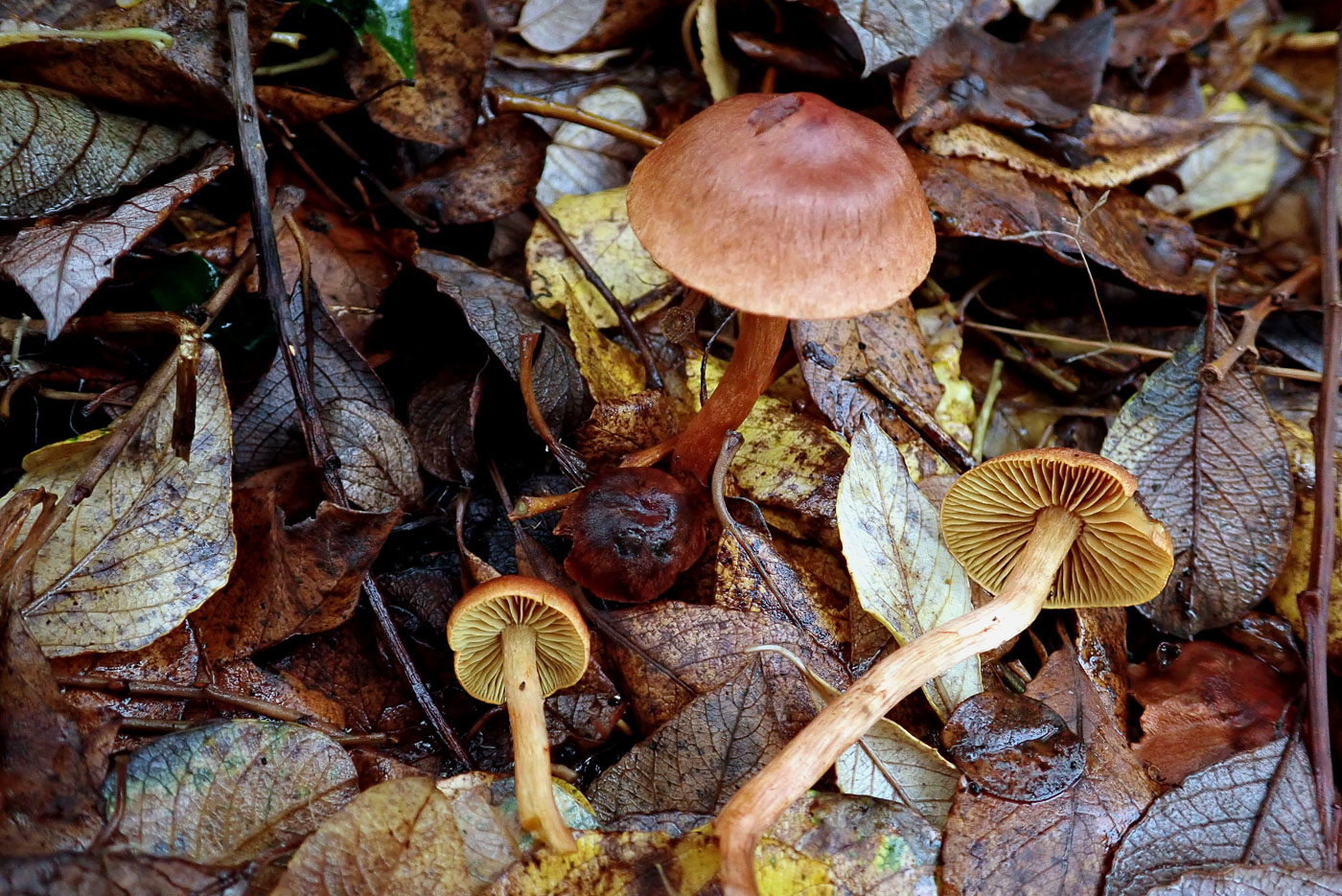
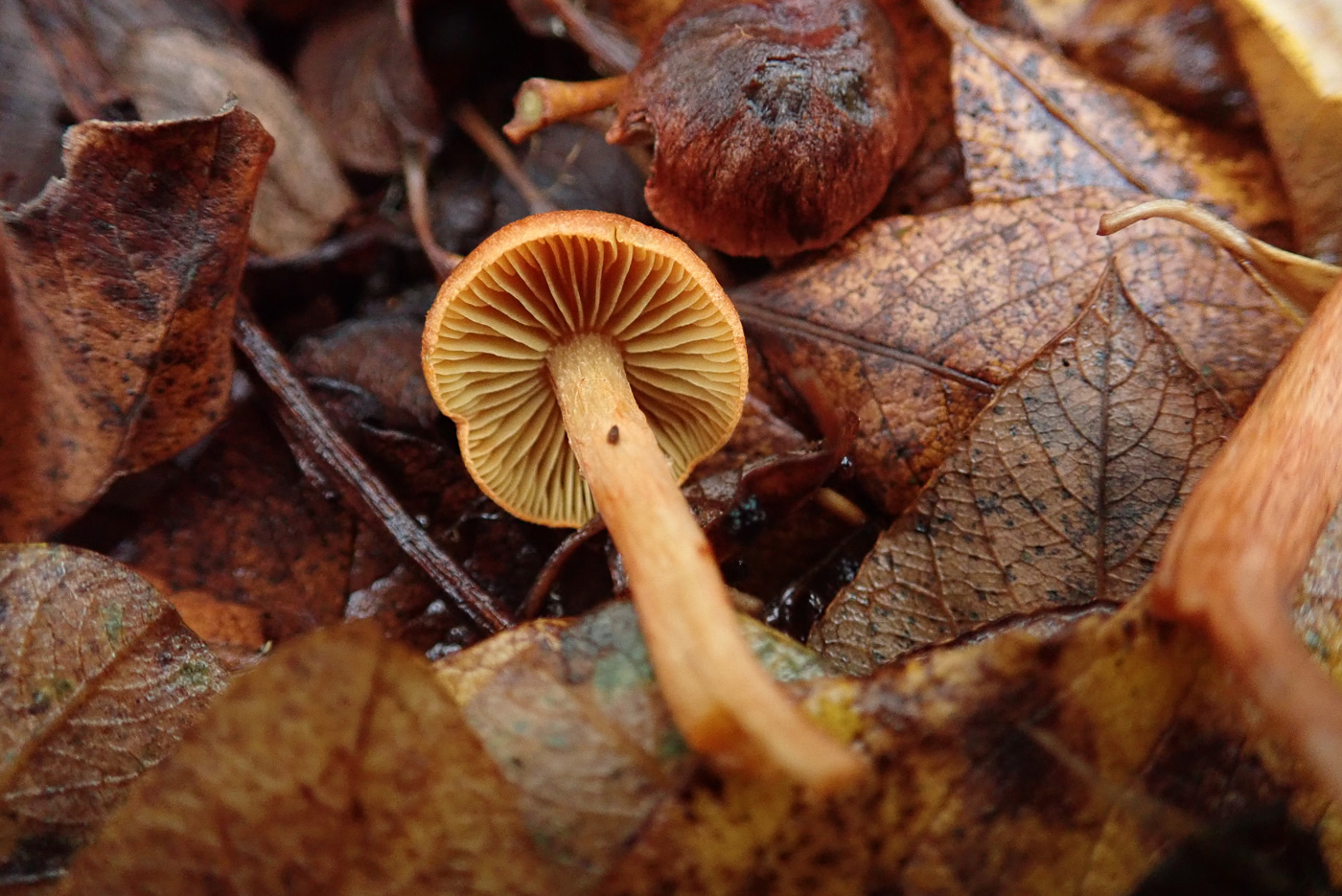 |
November 3rd Cortinarius uliginosus (Marsh Webcap)
In the Mire at Burnham Beeches Penny C.'s search under Willow was rewarded with these three specimens. This is an attractive smallish Webcap with a brightly coloured dry cap though the gills - yellow at first - quickly darken to orange then brown. Only found under Willow, this is a new species for the site and only the third site in the county where we've recorded it.
|
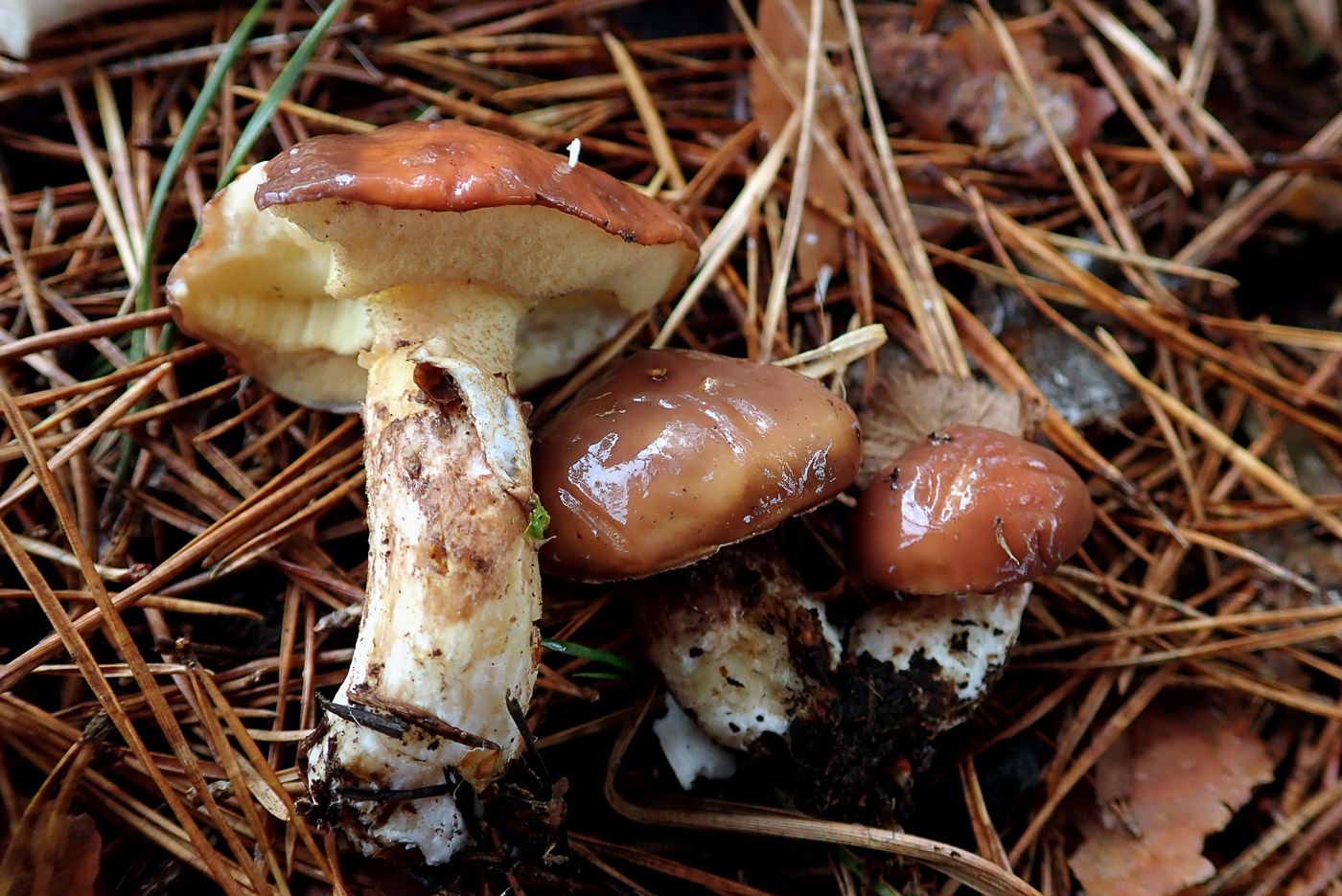 |
November 3rd Suillus luteus (Slippery Jack)
We have a previous photo of this species (dated Sept 25) but not of great material, as also here unfortunately, found by Penny C. under Pine in Burnham Beeches. Just worth including again, however, to show that it's still fruiting. See previous notes for more information.
|
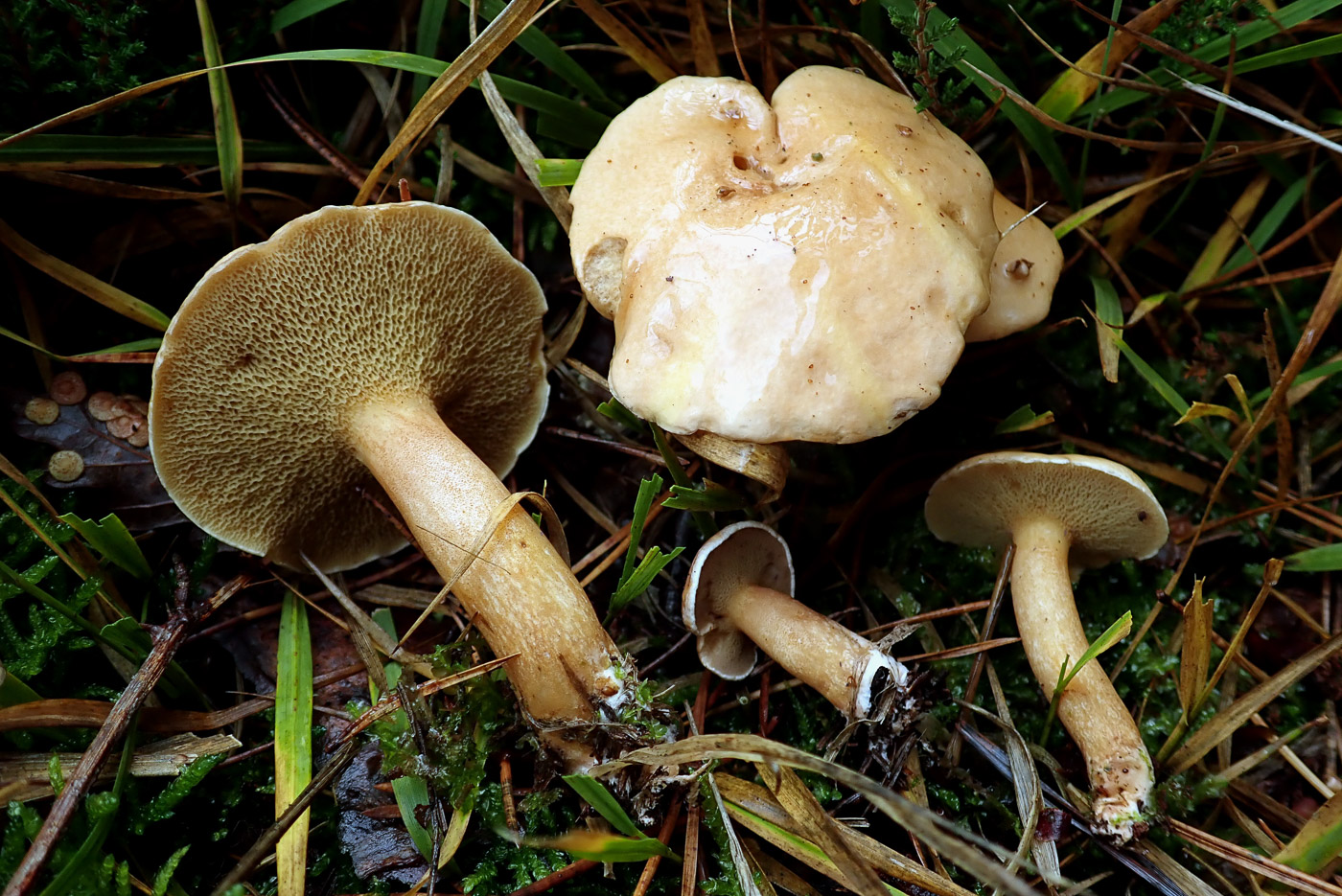 |
November 3rd Suillus bovinus (Bovine Bolete)
Under Pine at Burnham Beeches Penny C. found quite a few specimens of this Bolete, one of several in this particular genus which are host specific with Pine. It has a sticky pale clay brown cap, pores are soft and quite large, darker than the cap and also slightly decurrent, stems are more or less concolorous with the cap and lack a ring (which helps to separate it from S. luteus - also found here today). Penny searched the area for another mushroom which associates with this particular Bolete, Gomphidius roseus, but sadly to no avail. But if you find S. bovinus it-s always worth a hunt for this bright red capped smallish species which has strongly decurrent grey gills.
|
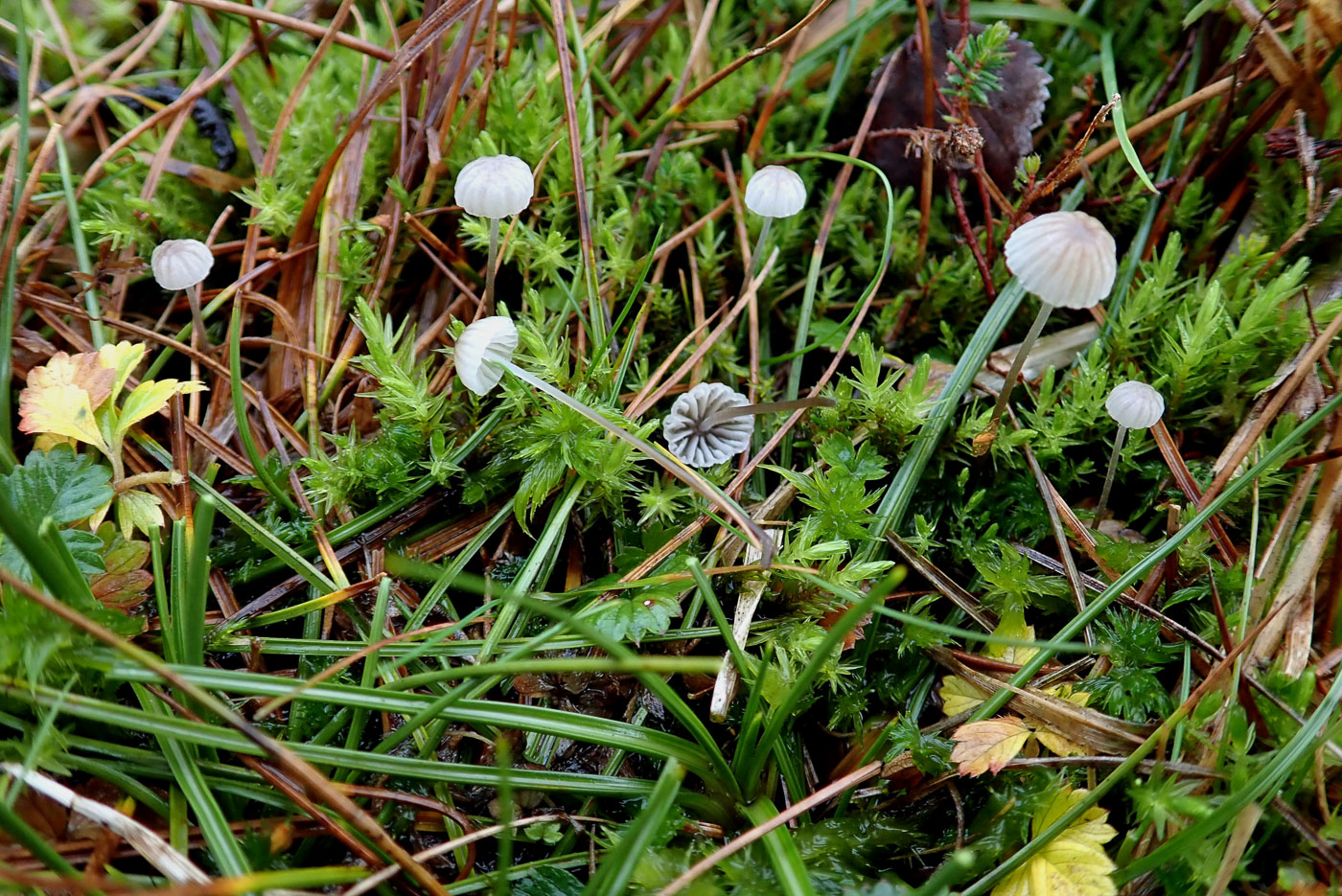
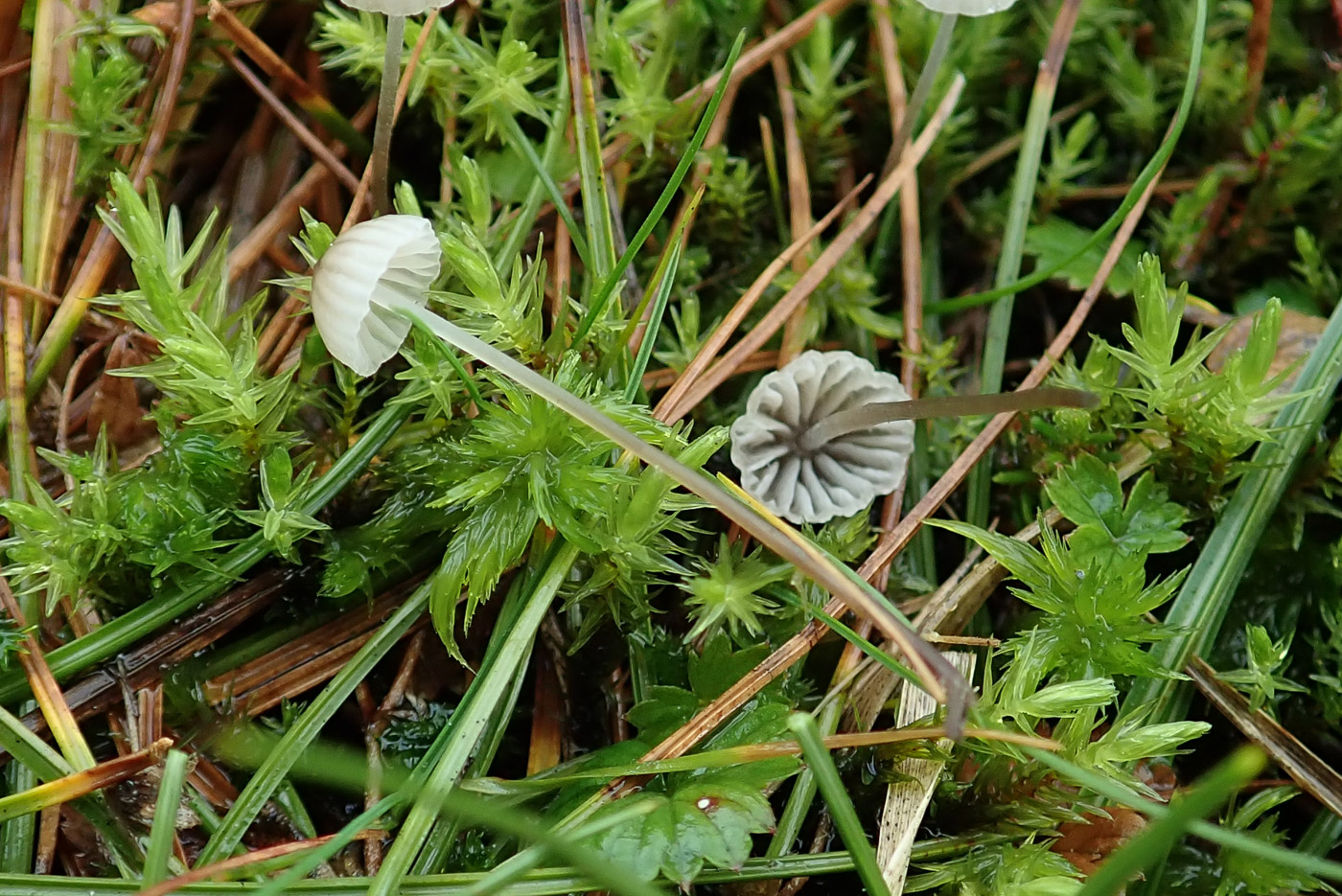
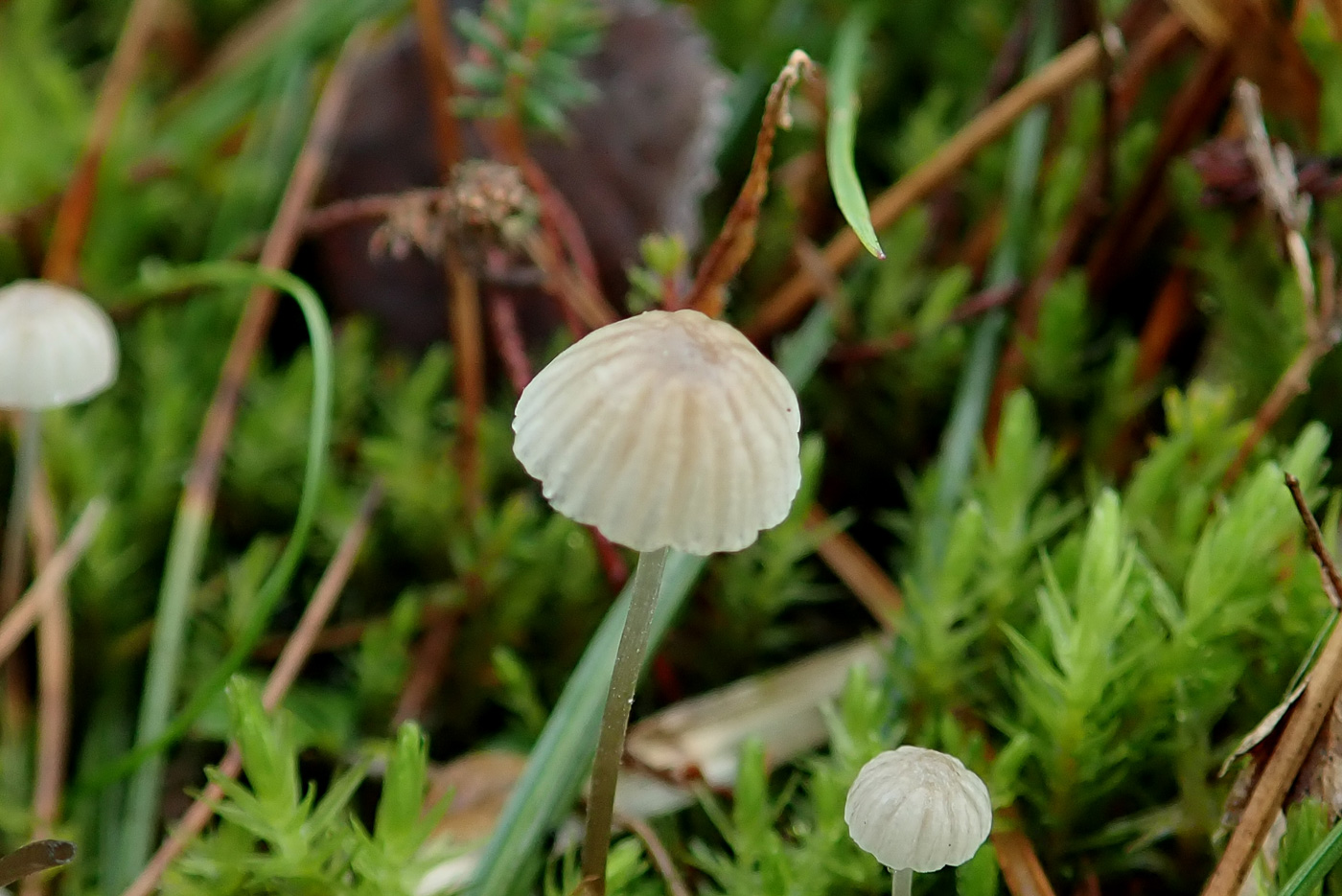 |
November 3rd Mycena sp. (an as yet undescribed or named Bonnet) 
This small and insignificant species of Mycena was first discovered by Penny C. amongst Sphagnum in the Mire at Burnham Beeches several years ago and she's found it there in good numbers every autumn since, though today she had to search and found just one group. Caps are about 5 mm across, bell shaped and translucently striate, whitish - with a brown tinge towards the centre when mature; gills are white, not crowded and stems are pale at the top but darker below. Nothing particularly notable there, but with a scope it has unique and quite remarkable cells on the gill edge - the feature which first alerted Penny to the fact that it might well be of particular interest. Its DNA sequence appears to have no match and Mycena especialists Aronsen and Laessoe have been consulted but these things take time. Hopefully it will eventually receive recognition and a name!
|
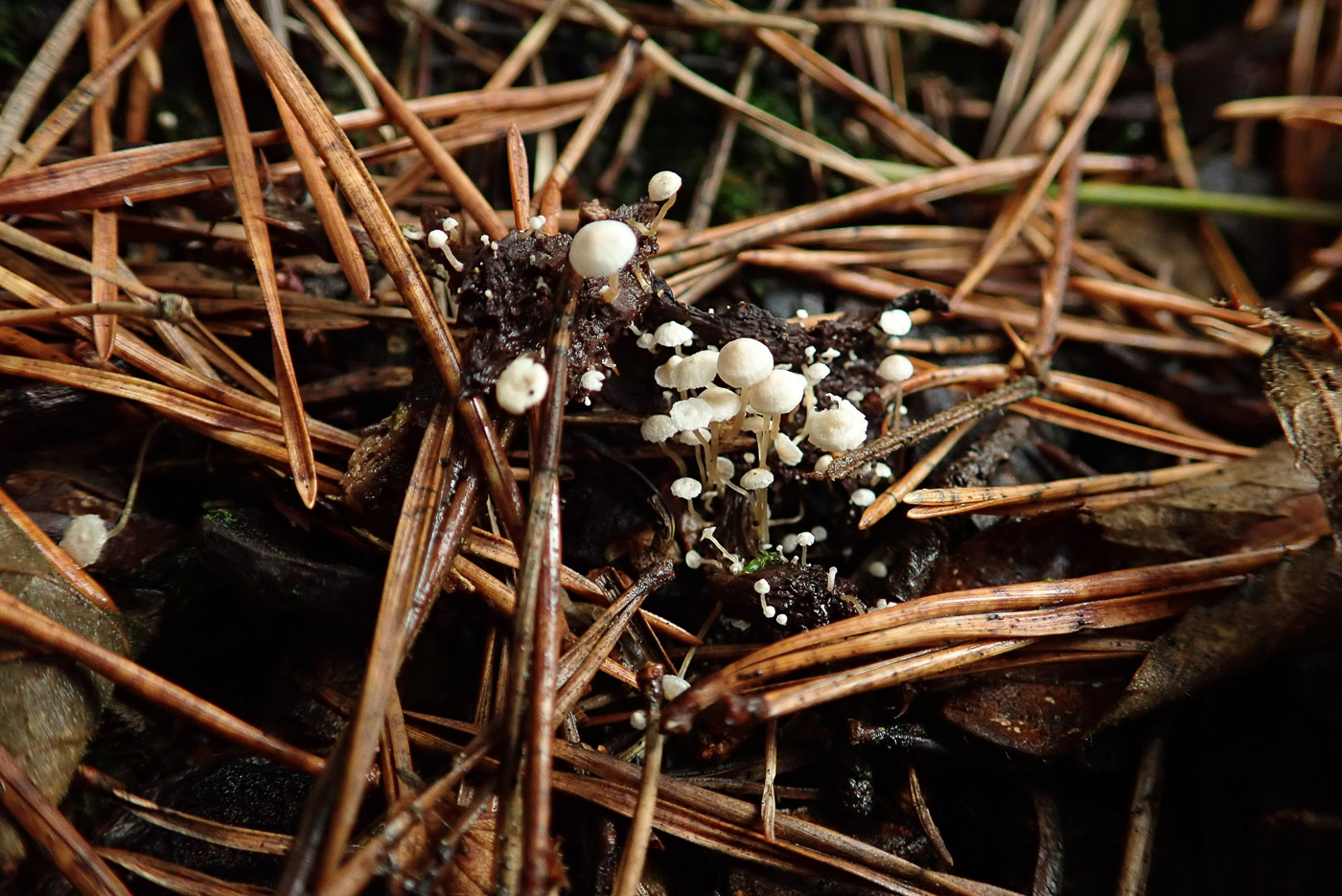 |
November 3rd Collybia cirrhata (Piggyback Shanklet) 
Whilst on her knees amongst the Pine needles in Burnham Beeches, Penny C. noticed these tightly clustered tiny bright white mushrooms growing on some rotting black matter. Their size can be assessed from the photo by the enormous pine needles dwarfing them! She collected them on their substrate (some unknown fungus) to examine later, knowing this was one of three species of Shanklet (still remaining in the genus Collybia!), all of which are fungi growing on rotting fungi, the identification of which depending upon the absence / presence and shape of a sclerotium (small tuber) attached to the stem base. This species is the commonest of the three and has merely some hairs at the stem base - no sclerotium. We have several sites in the county where it has been recorded previously, but not since 2003!
|
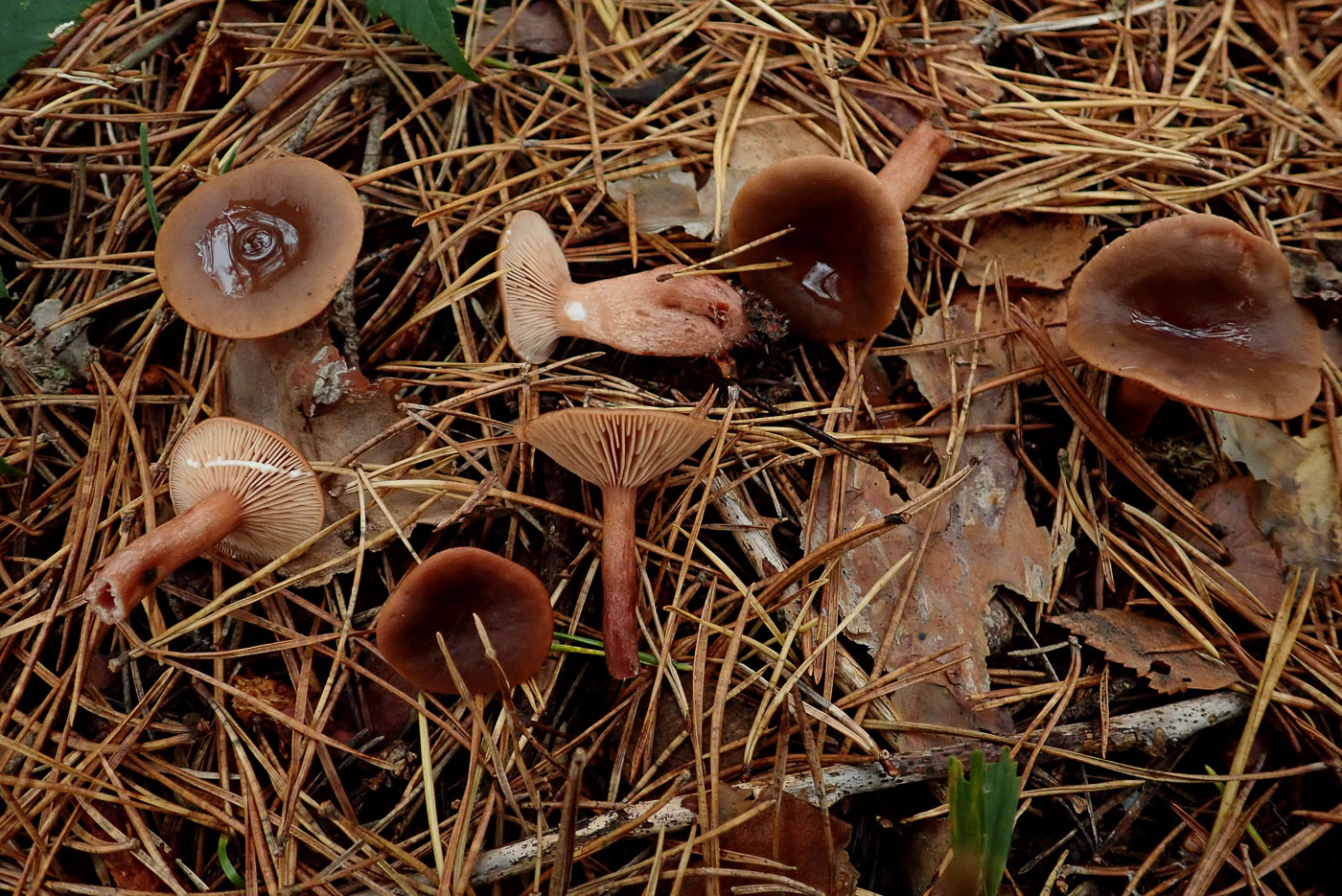
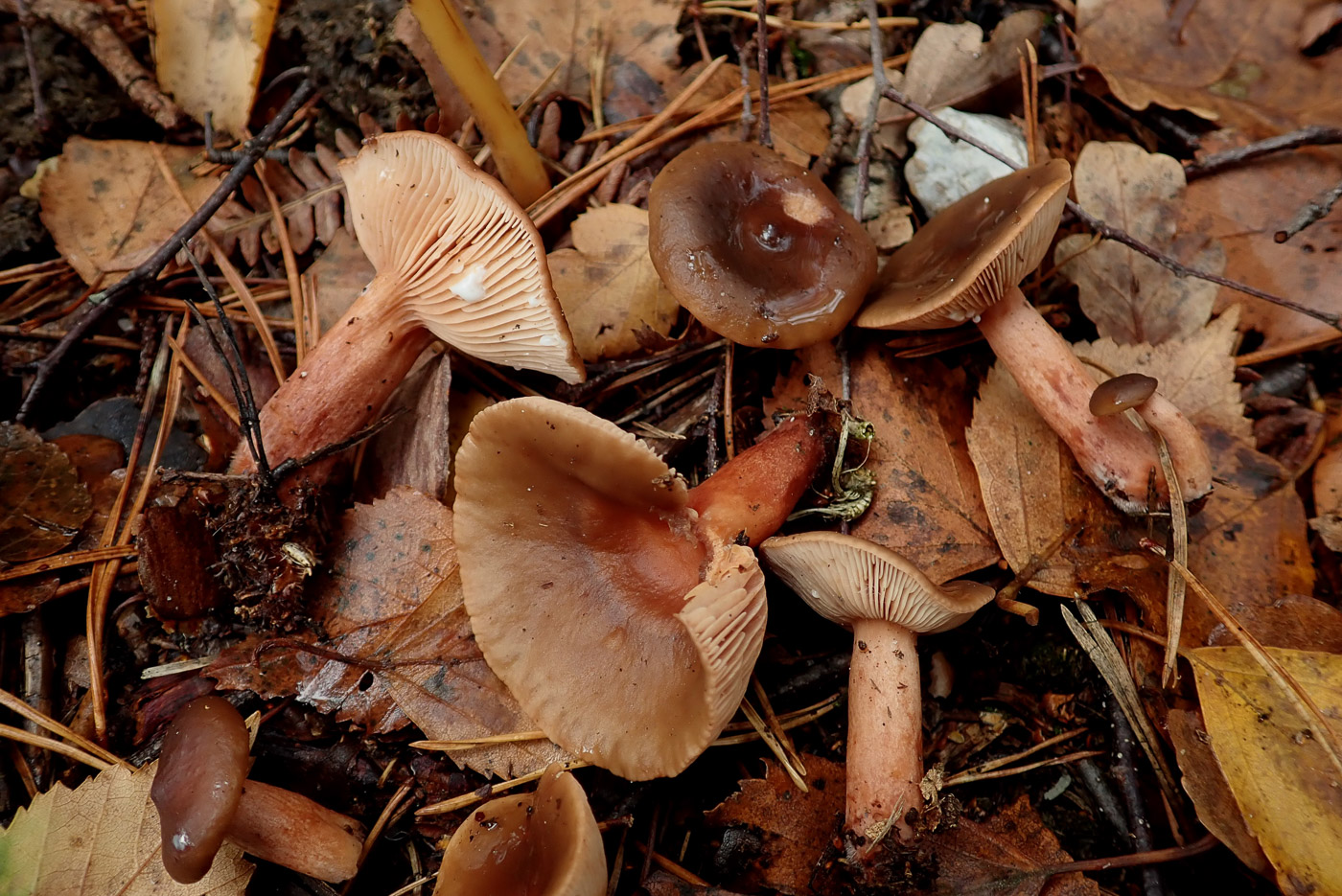 |
November 3rd Lactarius hepaticus (Liver Milkcap)
This dark brown Milkcap was found in large numbers by Penny C. under Pine at Burnham Beeches. Not uncommon given its host tree but usually fruiting late in the season, it is a medium sized Milkcap with a smooth rich liver brown cap and reddish brown stem. The white milk turns yellowish on a hankie after a little while, as also occurs in L. tabidus and L. lacunarum, but neither of those have such dark brown colours or occur under Pine.
|
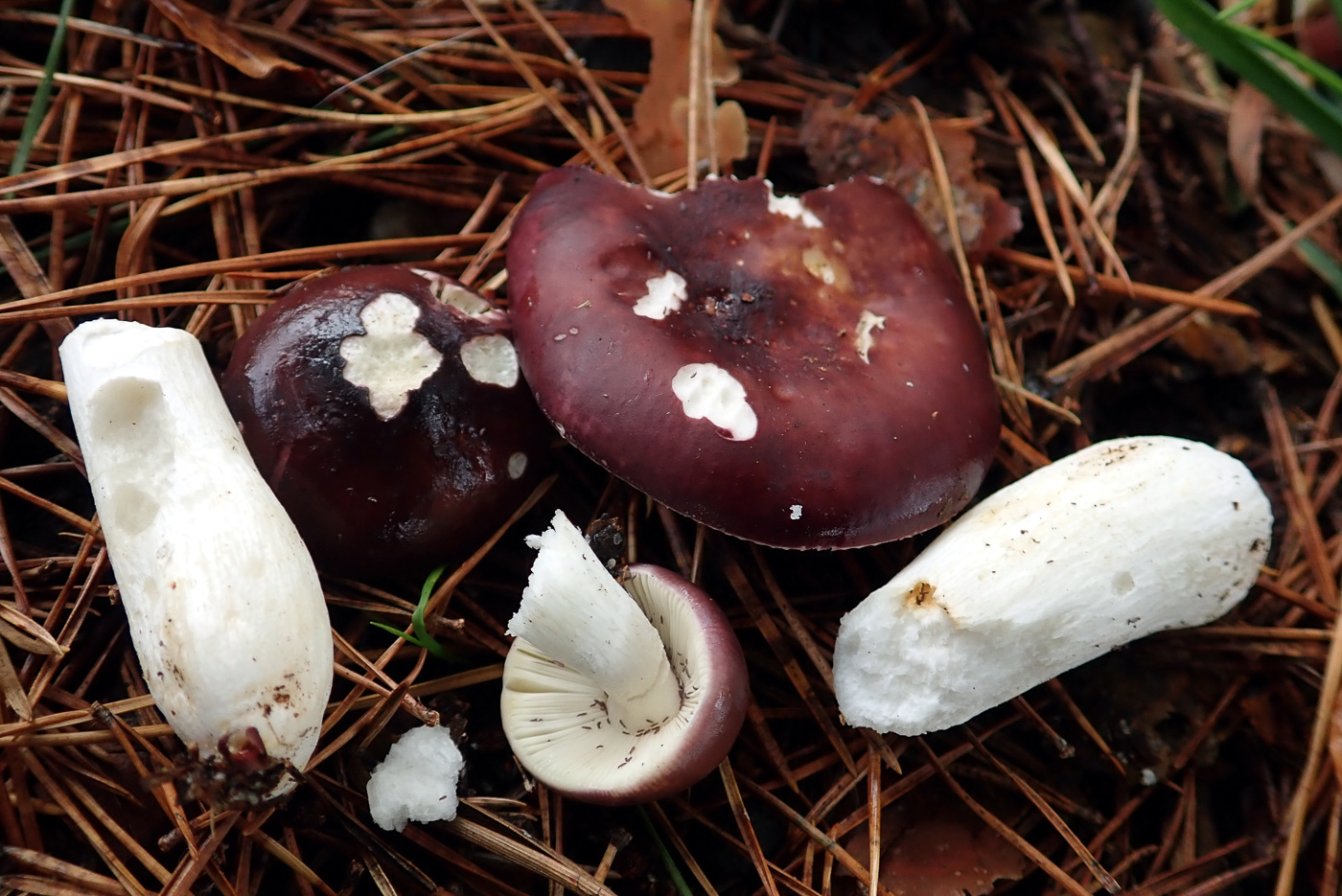
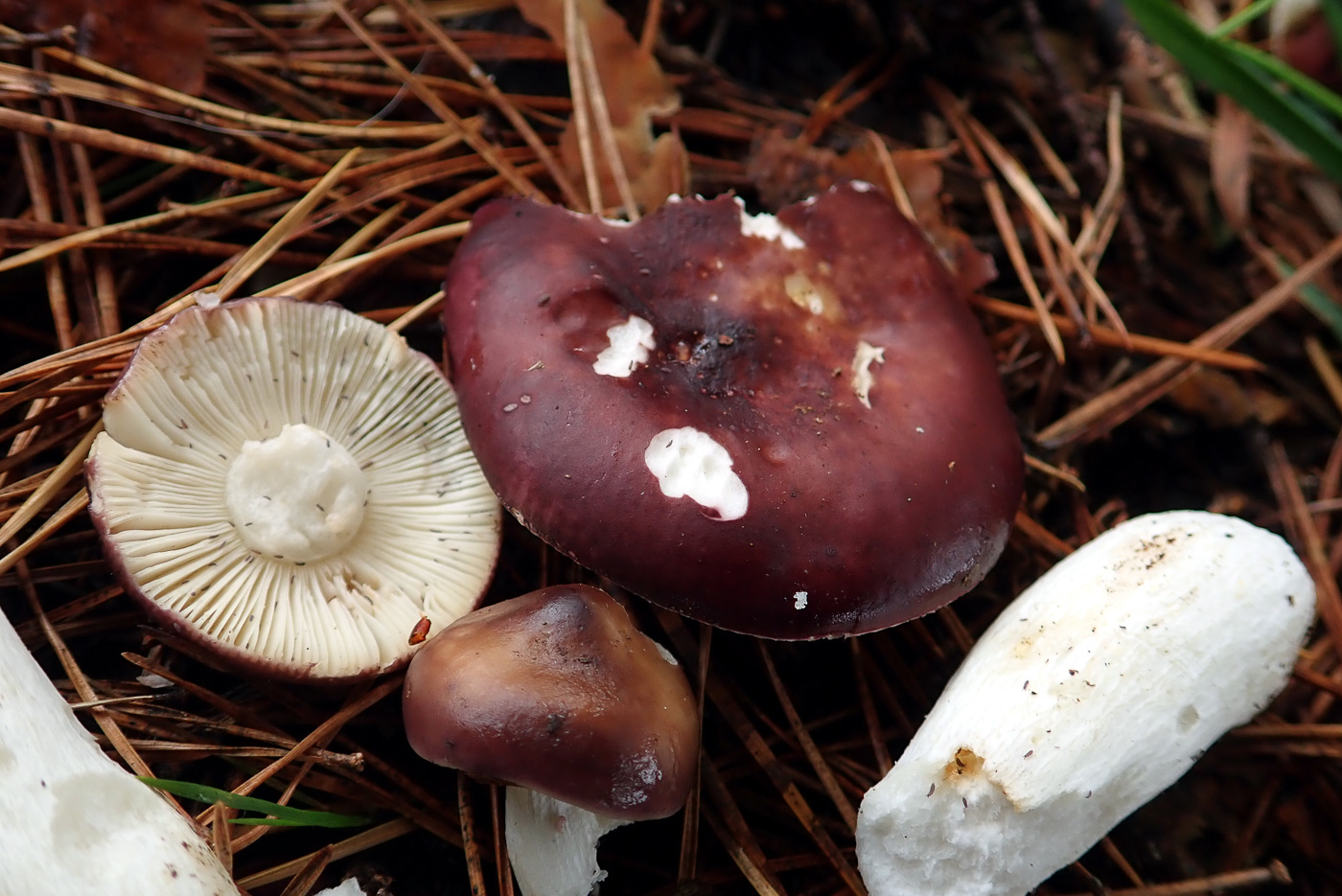 |
November 3rd Russula caerulea (Humpback Brittlegill)
This species was the third of Penny C.'s Brittlegills host specific with Pine in Burnham Beeches today. Yes, it's another with a red cap! However, this is a dark vinaceous purple red and the cap is smooth and shiny and has a distinct umbo - a unique feature in the genus. The gills are deceptively pale to start with but in maturity are almost orange, producing a dark sporeprint, and the stem is plain white. The larger specimen was damaged today but in photo 2 the small fruit body in front shows the typical 'hump' in the middle which remains as the cap expands. We have only two previous county records of this species, so not at all common in this area because like most Pine loving Brittlegills it prefers acid soil.
|
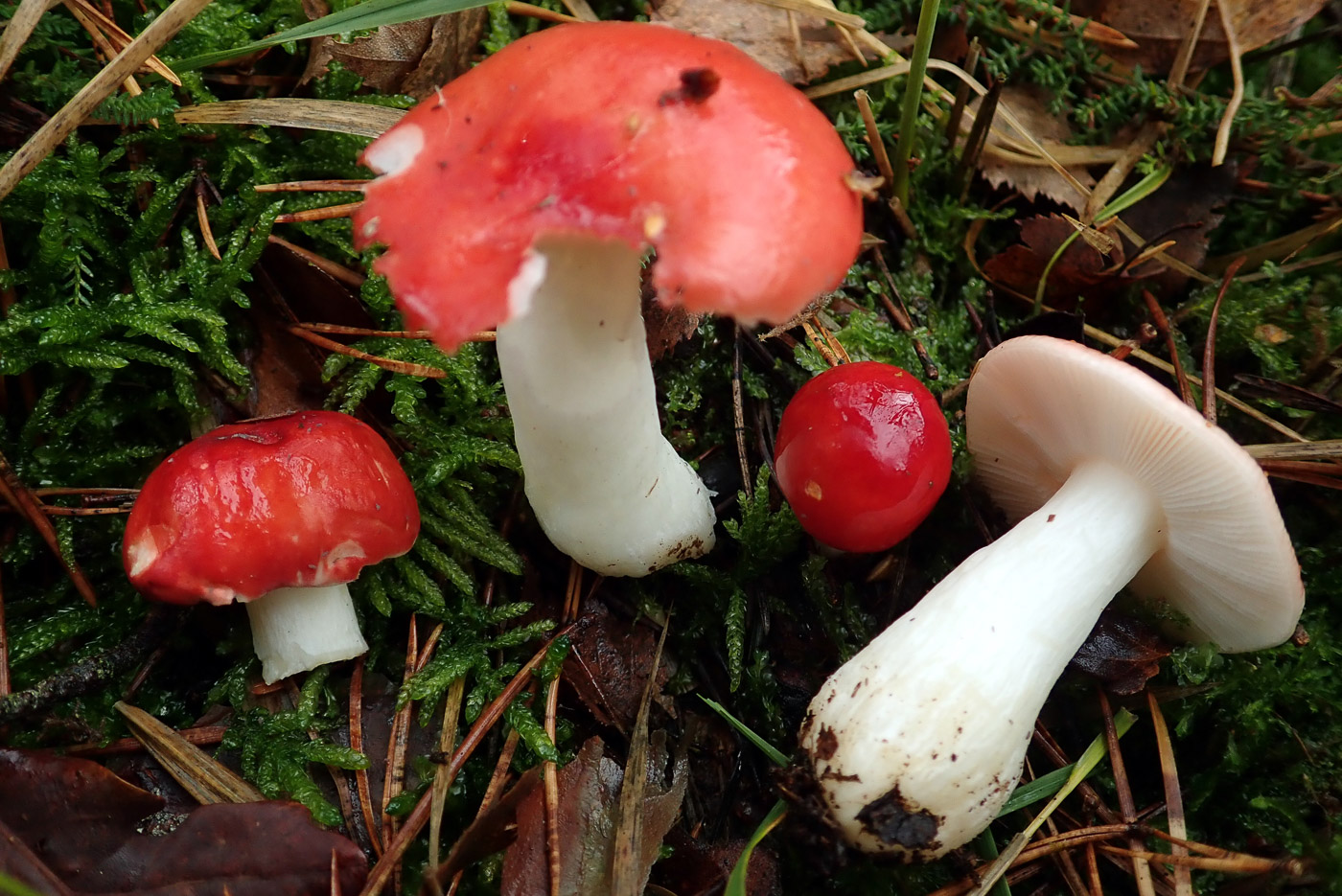
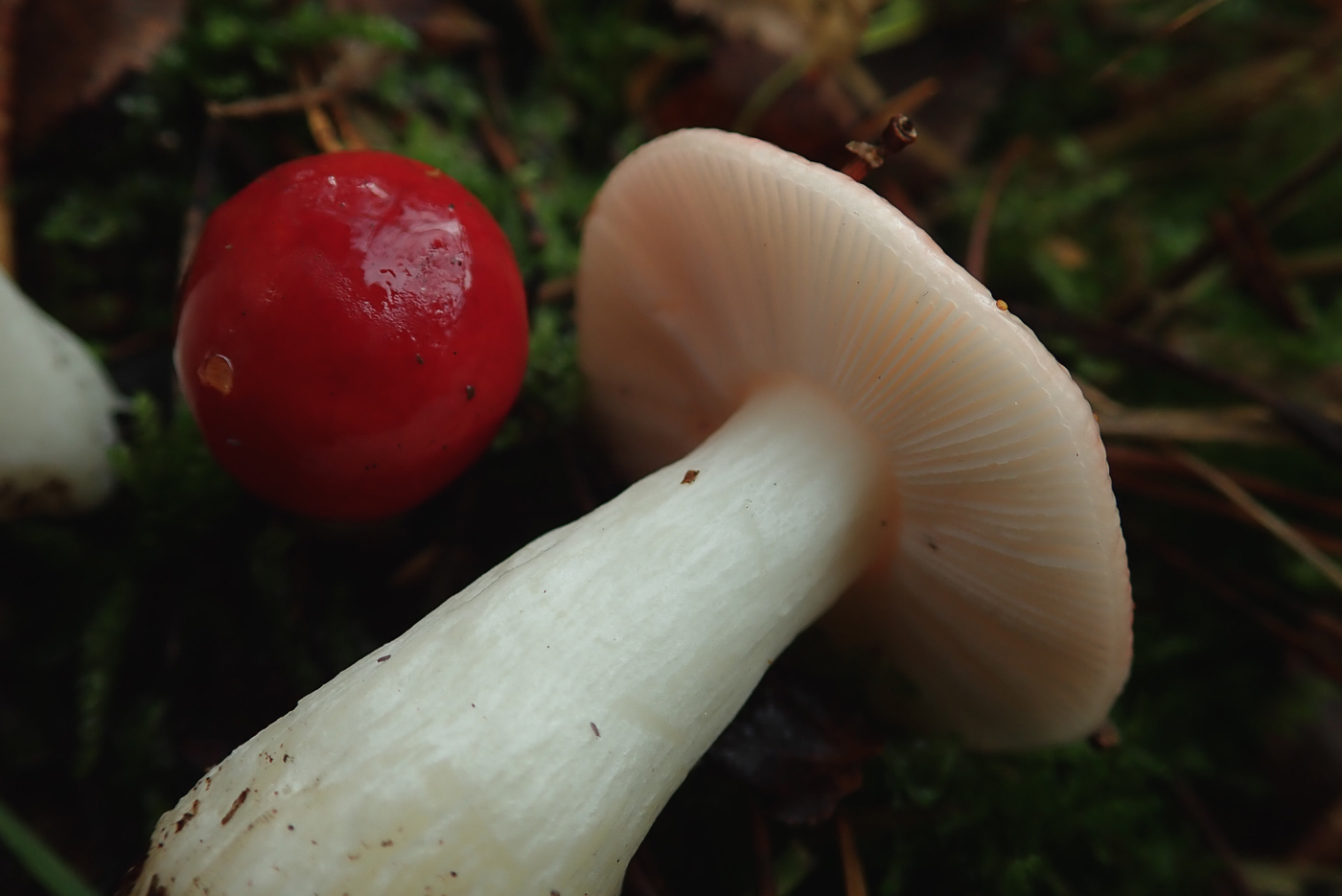 |
November 3rd Russula emetica (Sickener)
This species was another of Penny C.'s finds under Pine at Burnham Beeches. Yet another Brittlegill with a bright red cap, this one is very like the common R. nobilis (Beechwood Sickener) but only occurs under Pine and is far less common in the south of the country. If both Beech and Pine are present one cannot be sure which of the two species one has but there was no Beech anywhere near this area today. Furthermore, adding a drop of the reagent Guaiac to the stem turns instantly bright blue green in R. nobilis but has a negative effect in R. emetica, so this further confirmed today's identification.
|
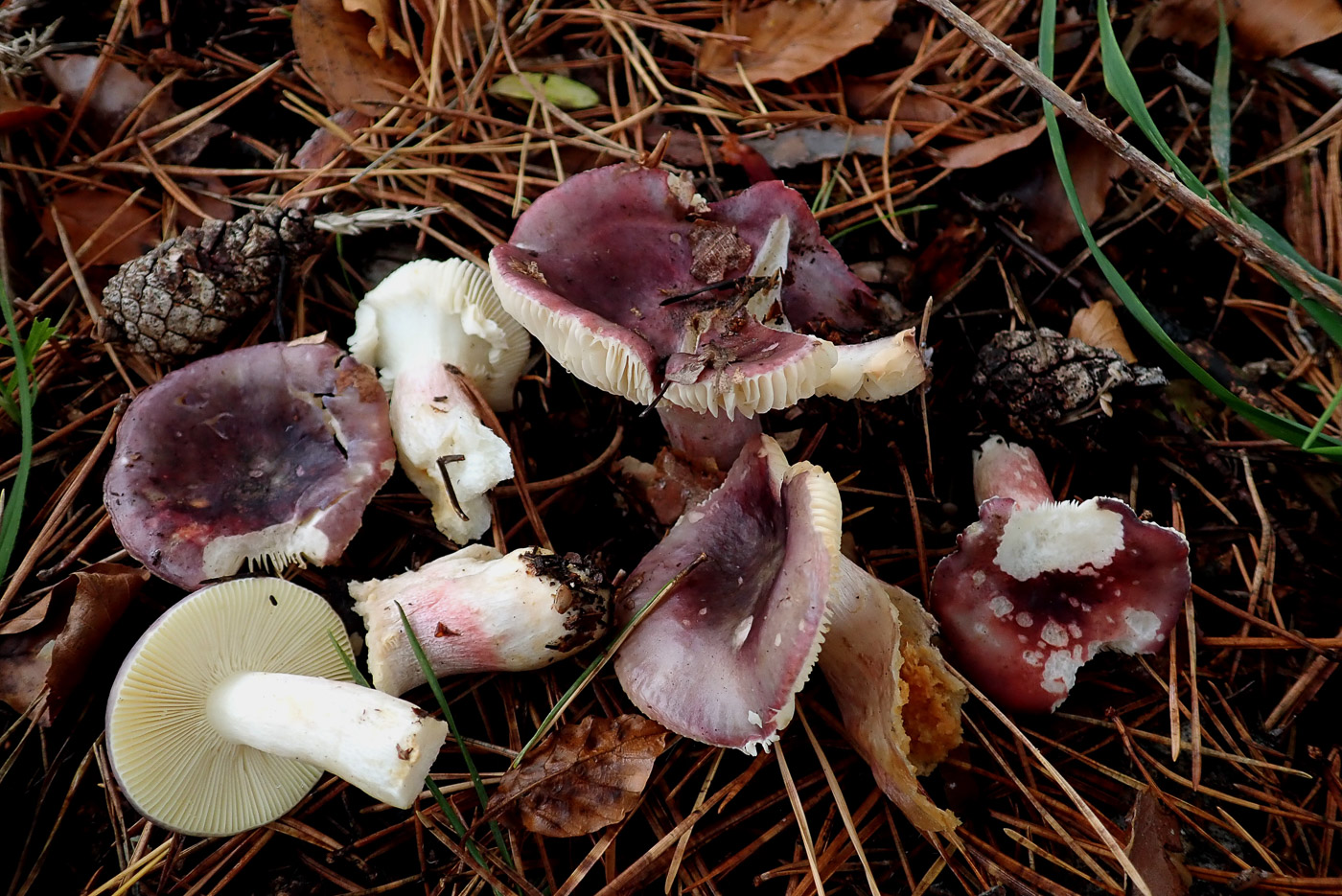
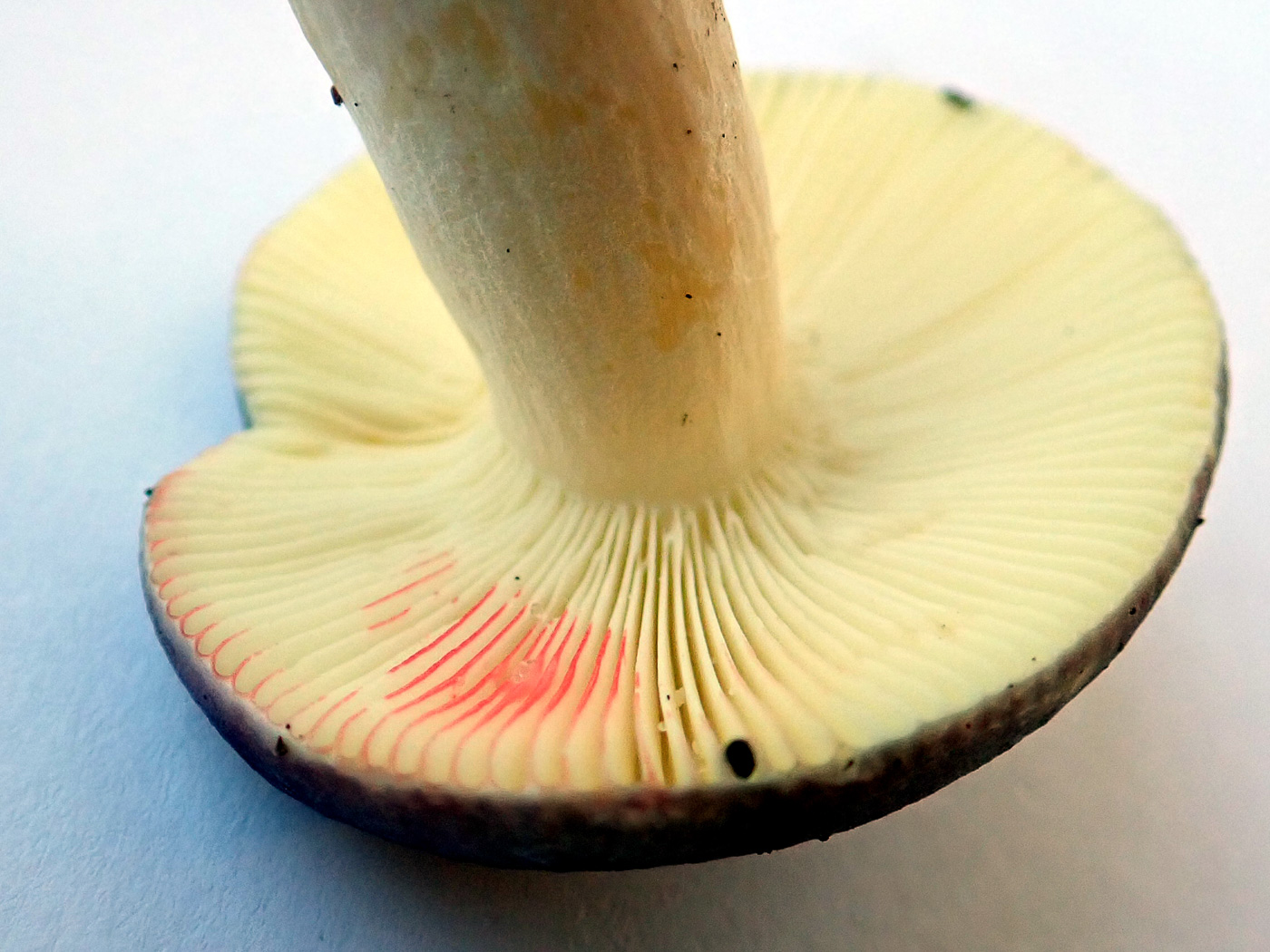 |
November 3rd Russula sardonia (Primrose Brittlegill)
Under the Pines near the Mire in Burnham Beeches Penny C. was surprised to find several species of Brittlegill fruiting so late in the season, though not in the best condition. R. sardonia is host specific with Pine and distinguished by its vinaceous to purple red cap sometimes with green tints, its pale primrose yellow gills and a white stem which often has patches of cap colour (seen of several of today's specimens. With many Brittlegills it can be a useful identification aid to taste the flesh which can be mild, hot or bitter according to species. Luckily R. sardonia has enough features without the need to taste it because it is prohibitively burning hot! One such feature is that a drop of Ammonia on the gills turns bright pink though only after 10 minutes or so. Photo 2 shows this feature, tested once Penny was home. We have four previous county records.
|
November 2nd 2020
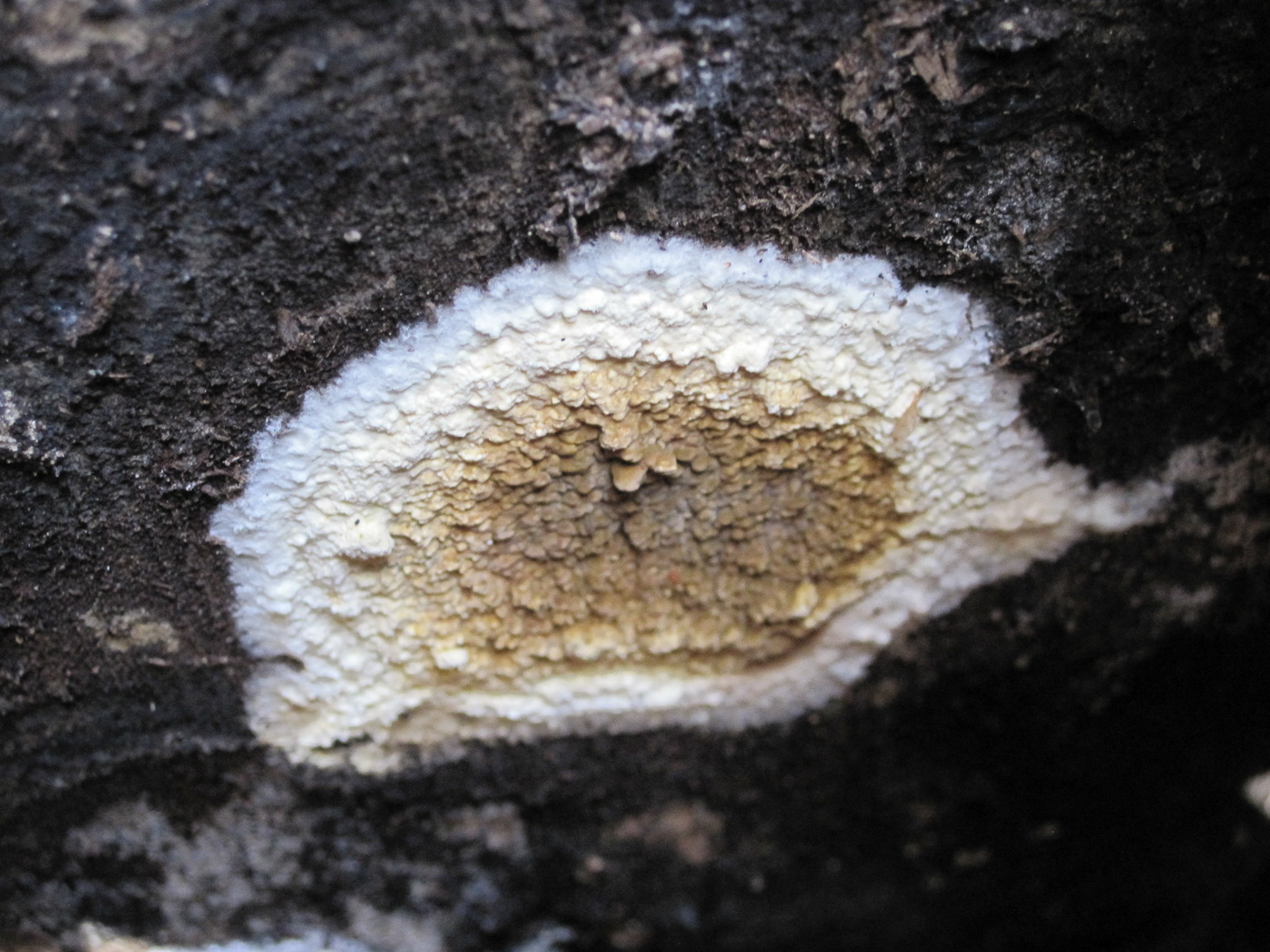 |
November 2nd Coniophora puteana (Wet Rot) 
Joanna Dodsworth noticed this patch of corticioid fungus on fallen Hawthorn near Brill cricket pitch. This species forms circular flat patches on wet fallen wood which can merge and spread into large sheets. The frilly white edge and darker roughened centre are typical. This is the Wet Rot fungus which can damage buildings when found in cellars and wooden foundations.
|
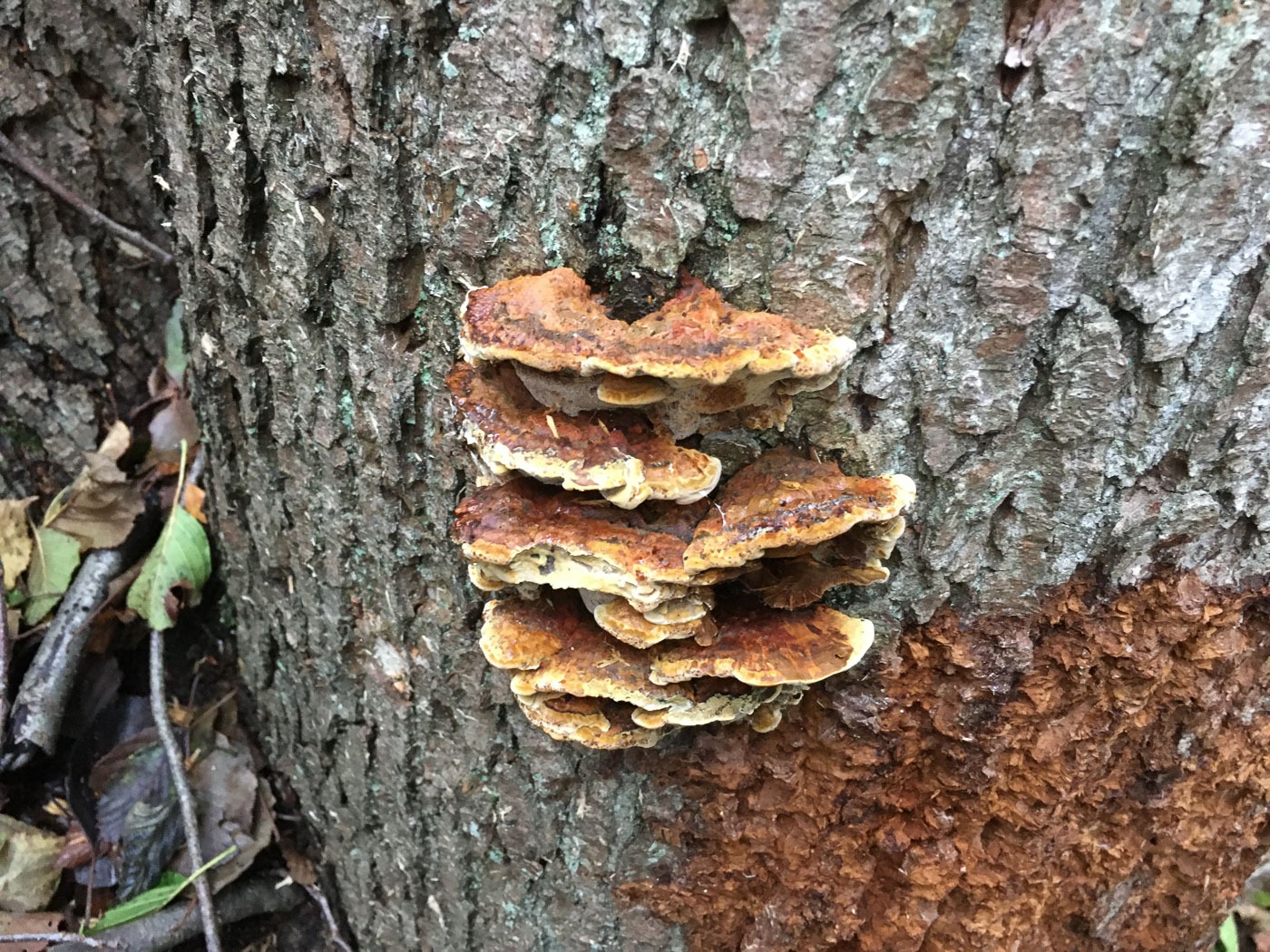
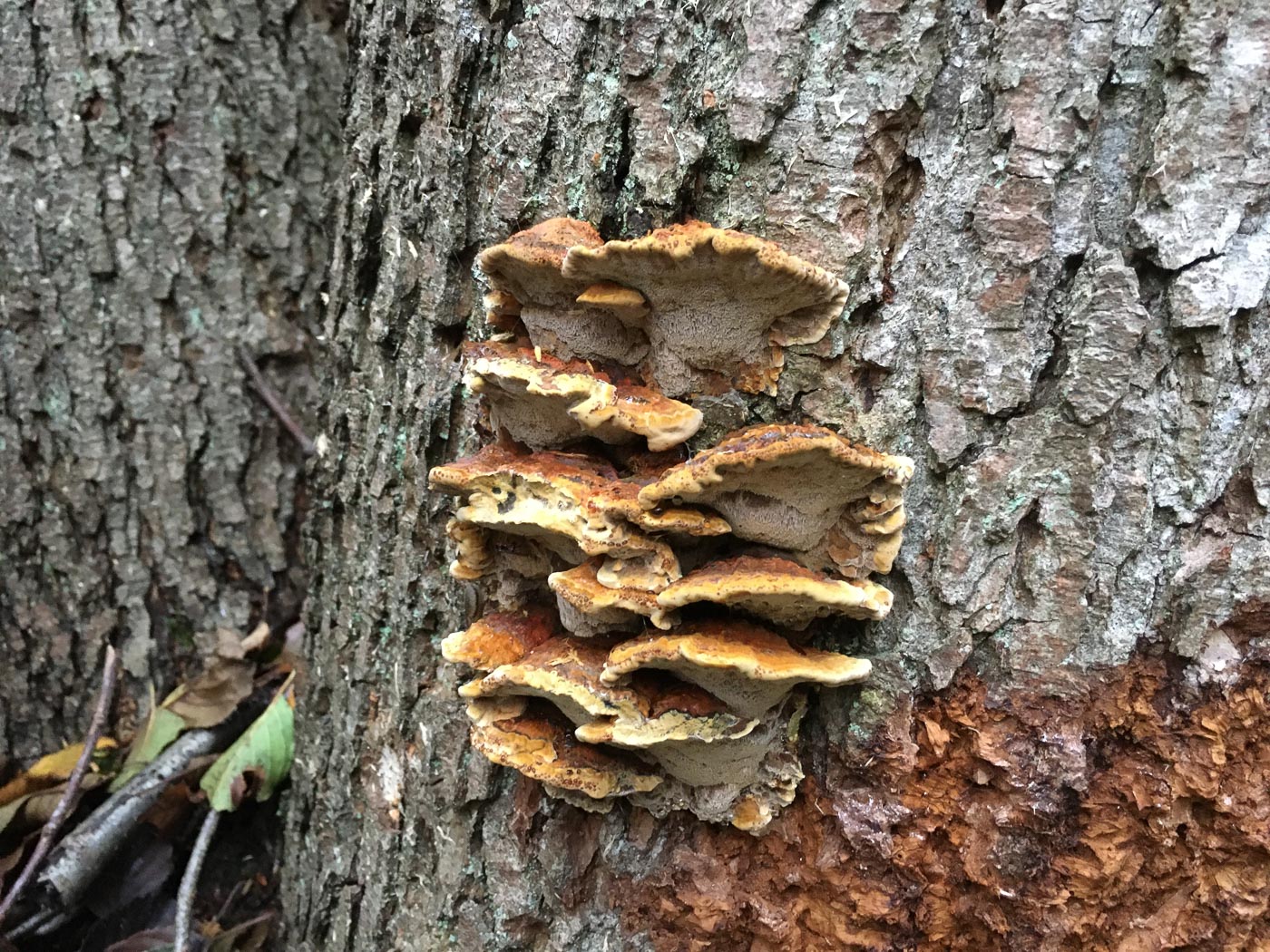 |
November 2nd Inonotus radiatus (= Mensularia radiata) (Alder Bracket) 
Russell Ness noticed this tier of brackets on a standing Alder trunk in Egypt Woods, Burnham Beeches. Seldom recorded possibly due to the lack of Alder in many of our regular foray sites, it is apparently commonest on this host but not exclusively so and can be found on a range of other deciduous trees. Russell took the trouble to check with a scope for the hooked setae (brown pointed hairs) found within the context - these are a sure way to separate the species form several other lookalikes. We have just a couple of other county sites for the species.
|
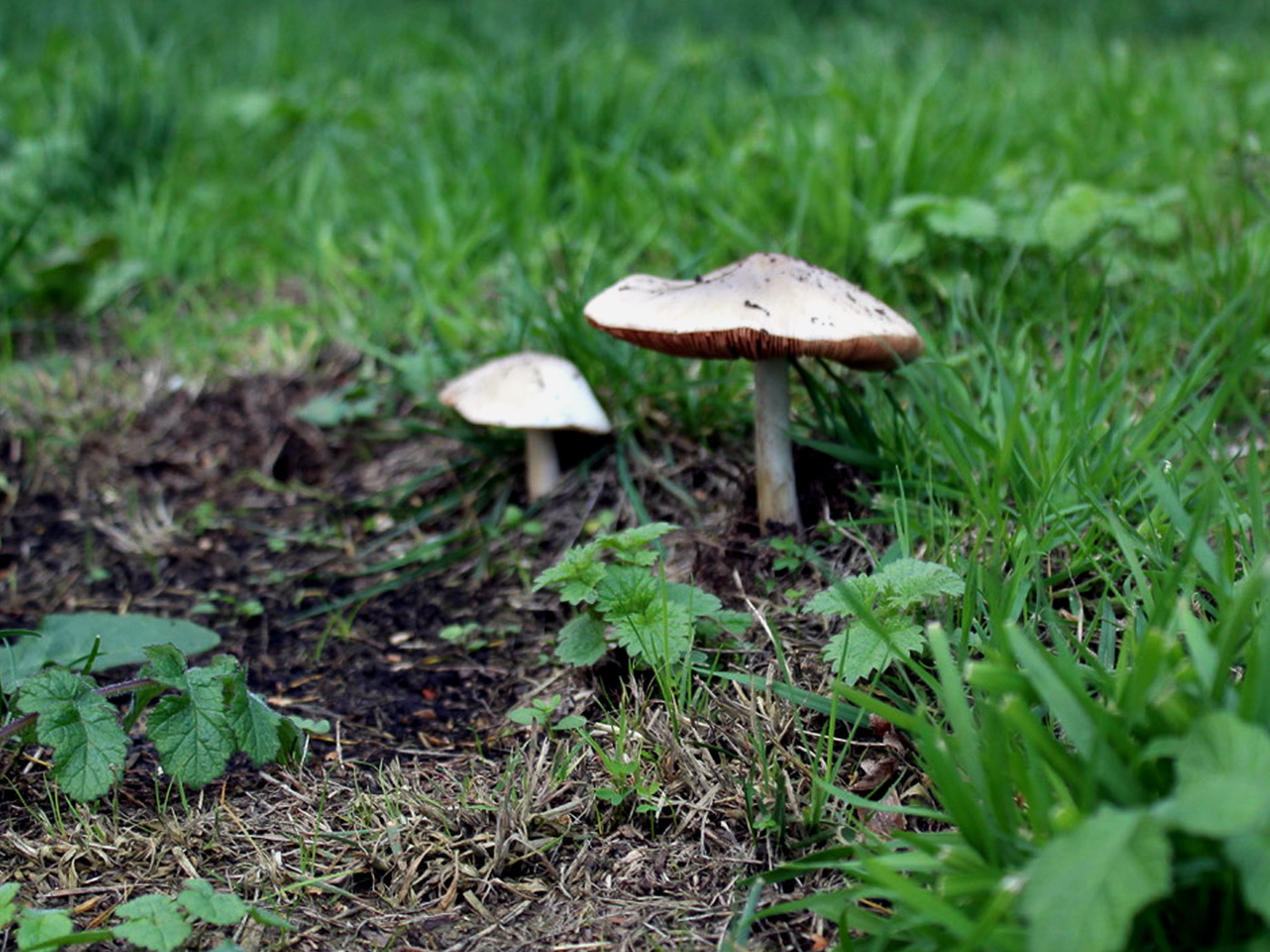
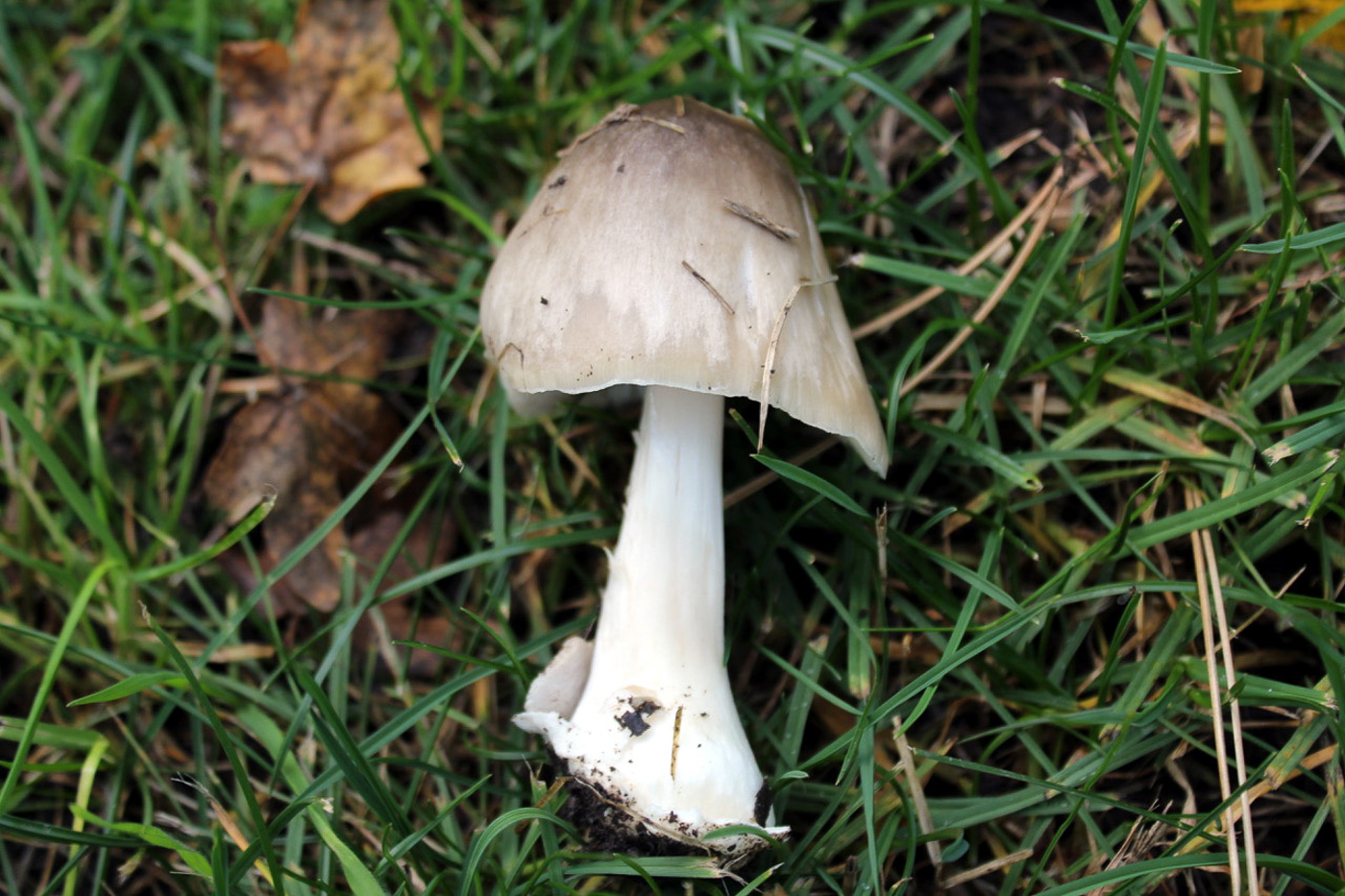
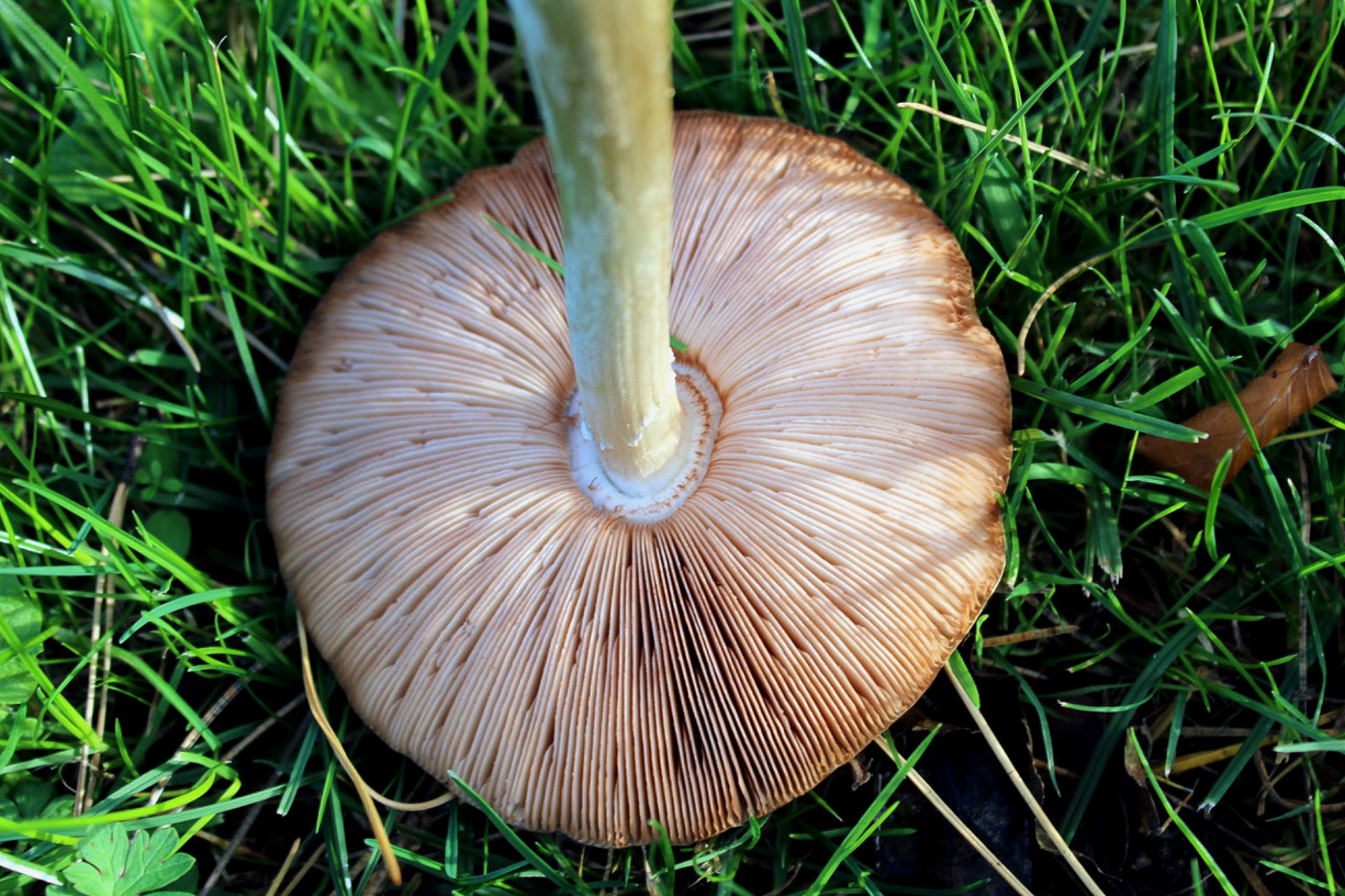
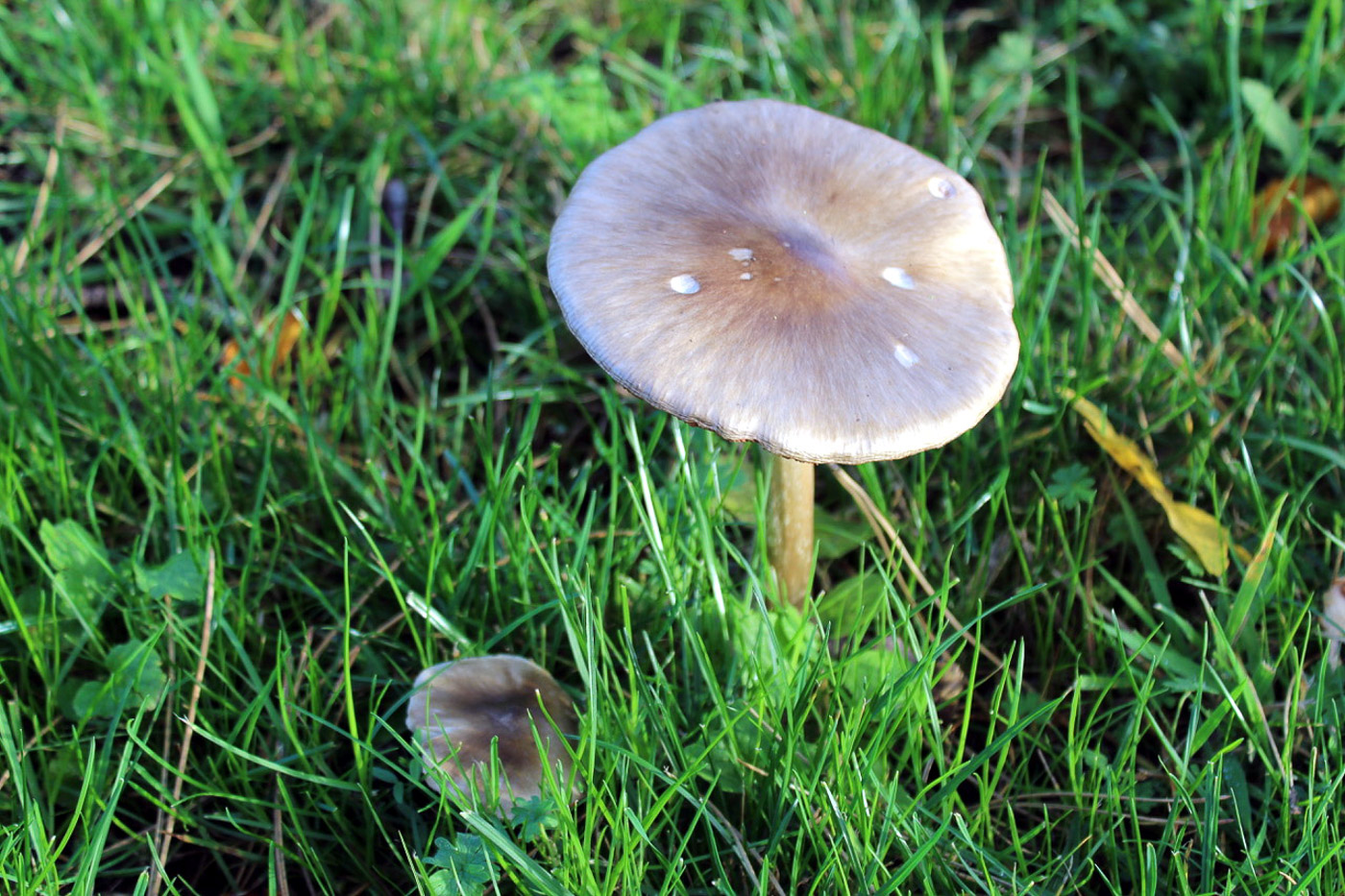 |
November 2nd Volvariella (= Volvopluteus) gloiocephala (Stubble Rosegill)
Rebecca Hiorns found this distinctive species in parkland in West Bletchley. As its common name suggests, this is a species of agricultural fields as well as grassland and can sometimes be seen in stubble field in 100s. The genus (a few species of which have recently been moved to Volvopluteus) is very similar to Pluteus, having the same pink gills which are free of the stem apex (see photo 3). The main difference - which it's easy to miss unless you collect the stem base very carefully - is that the stem has a fragile membranous volva, similar to the Vaginatae group of Amanita species. In fact in early stages before the gills have turned pink, this species looks extremely like A. vaginata with its grey smooth cap. However, the cap is sticky and lacks the radial striations of that species, also it does not associate with trees. In any case once mature there is no mistaking the pink gills. This is a large species with caps getting to 15 cms across and stems even taller than that. Compare with V. bombycina dated Aug 28(!) which is absolutely nothing like this species at all!
|
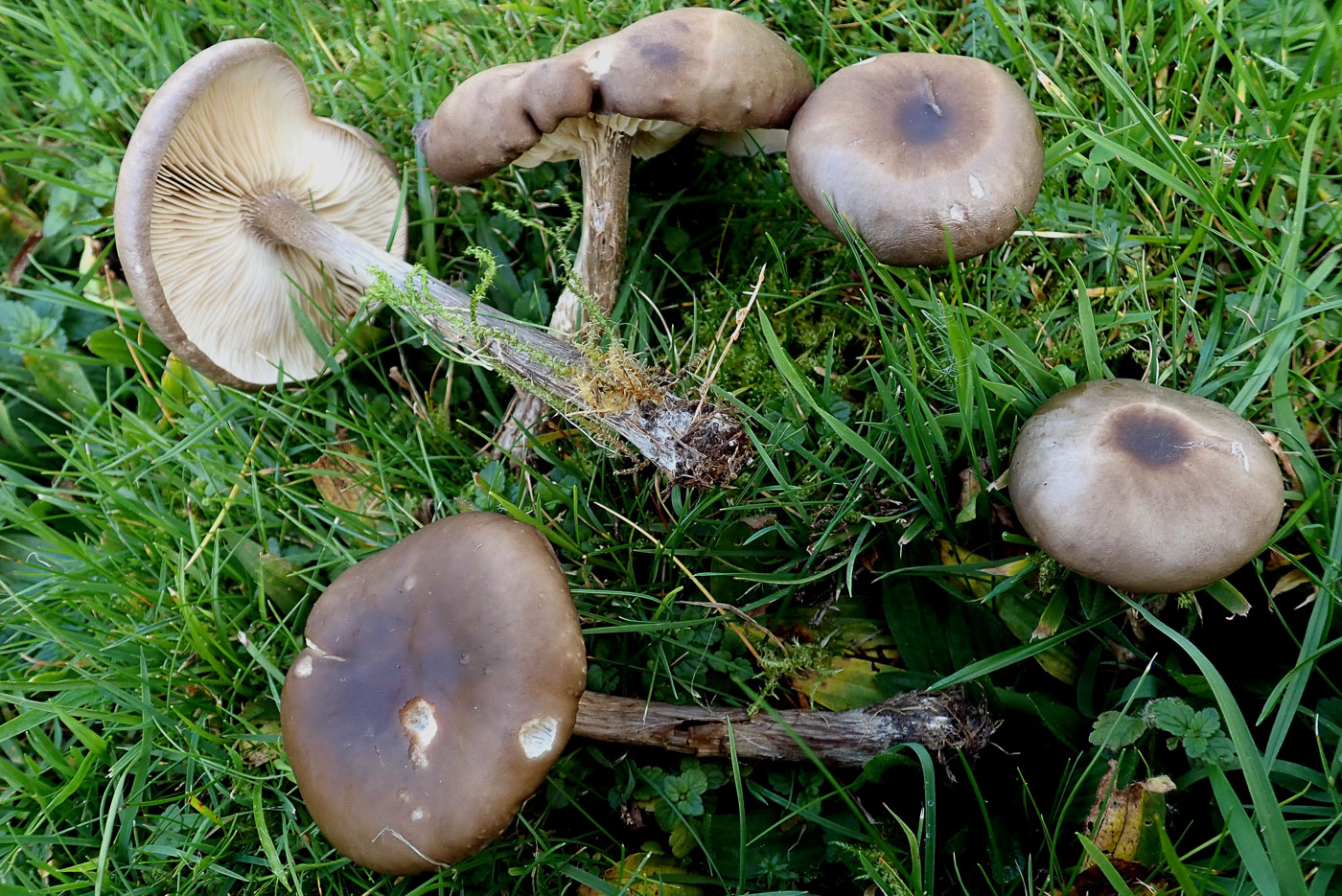 |
November 2nd Melanoleuca polioleuca (Common Cavalier) 
There were plenty of specimens of this species in Bradenham Churchyard, found by Penny C. We do have a previous photo from woodland litter dated Oct 14, but these grassland specimens look rather different with darker brown caps (in fact Penny needed to check with a scope just to make absolutely sure of the identification) so are worth including here.
|
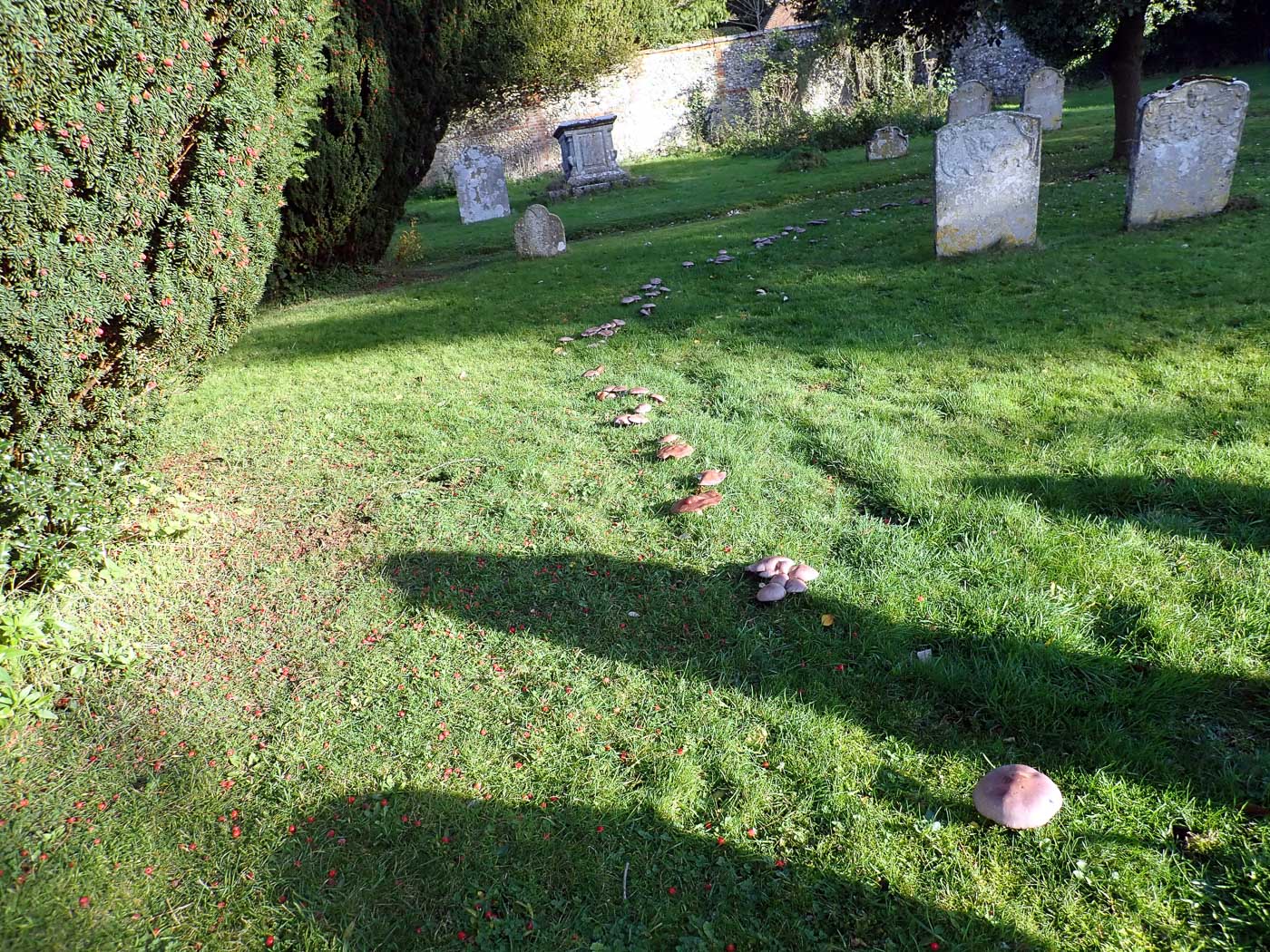 |
November 2nd Lepista nuda (Wood Blewit)
If anyone would like to see an enormous complete ring of this species, it's worth a visit in the next few days to Bradenham Churchyard where Penny C. could hardly believe her eyes today! Mature caps were up to 10 cms across or more and beautifully lilac and the ring must have been at least 10 metres diameter.
|
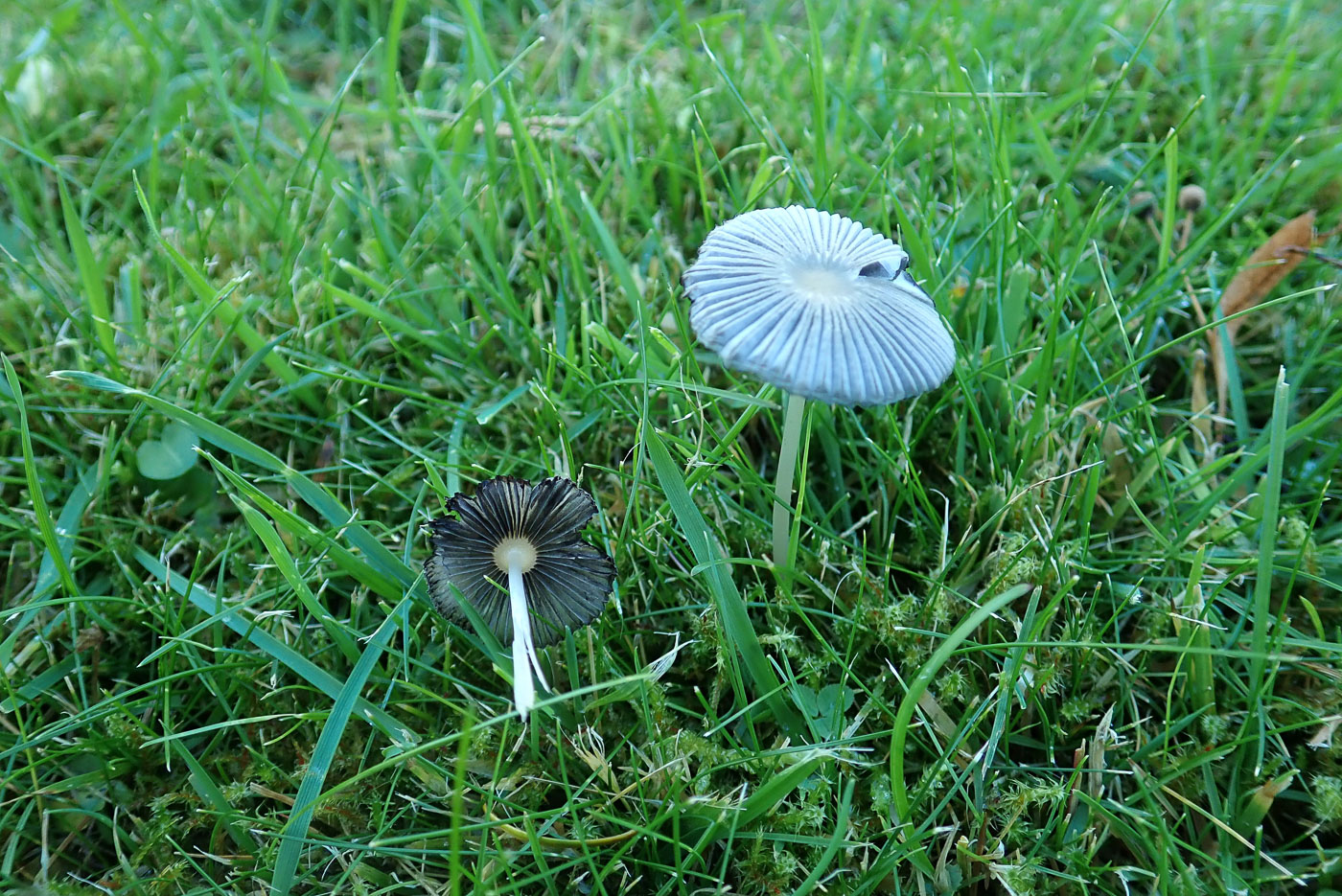 |
November 2nd Parasola kuehneri (a Parasol with no common name) 
This delicate member of the Parasol group of Inkcaps was in mossy grass under shrubs in Bradenham Churchyard. This small group of species is easy to recognise in the field from their distinctive thin fleshed caps when mature and the fact that they don't deliquesce (as other Inkcaps do: in genera Coprinus, Coprinellus, Coprinopsis). This also gives one time to get home and examine them before they disintegrate! Then it's down mainly to spores size to identify to species.
|
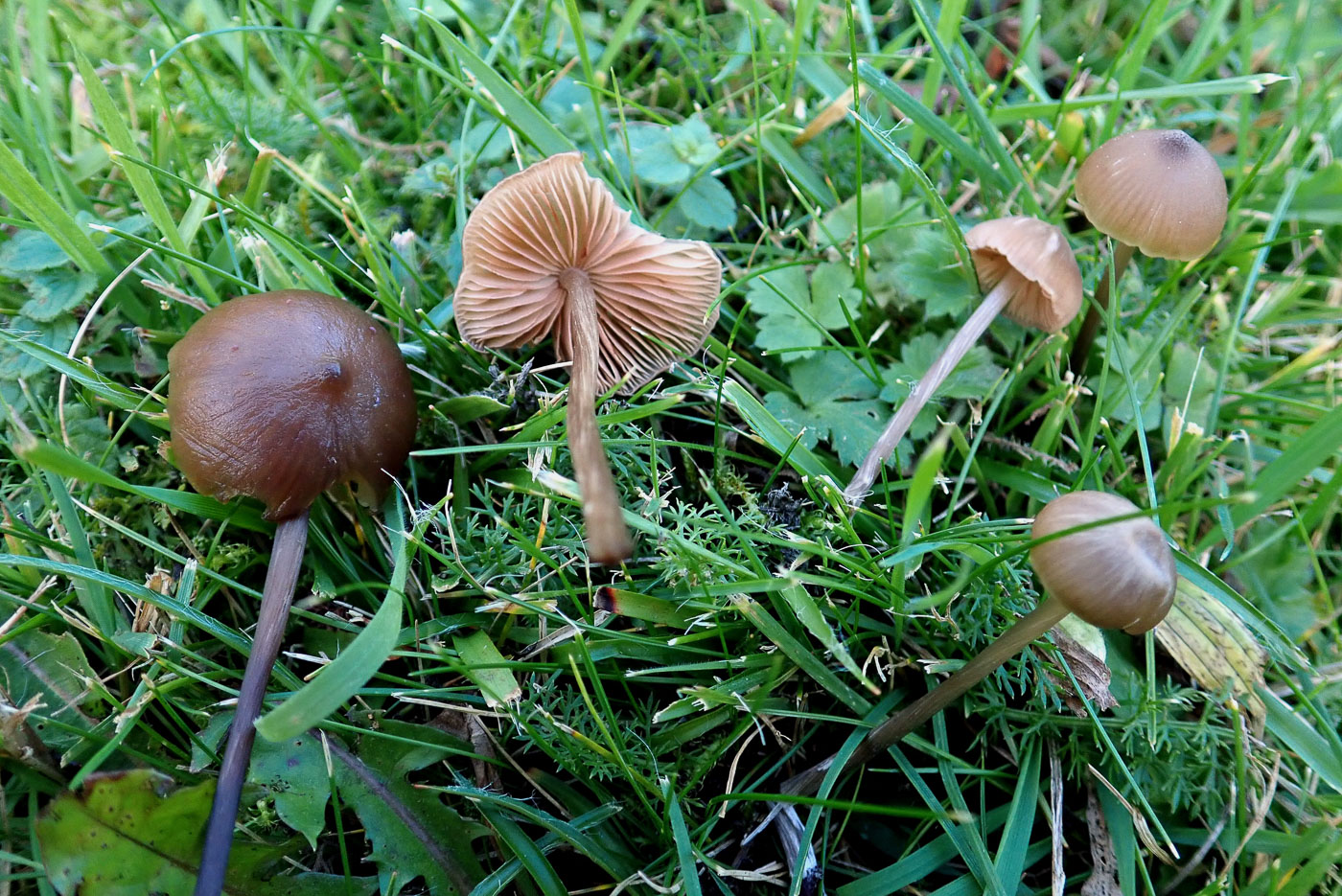 |
November 2nd Entoloma hebes (Pimple Pinkgill) 
Penny C. found several scattered fruitbodies of this typical LBJ in mossy grass in Bradenham Churchyard. She noted in the field that caps all had a tiny umbo (papilla) which suggested this particular species, so despite the fact that Entoloma is one of her least favourite genera she decided it might be worth having a go to confirm it. There are other very similar Pinkgills with small umbos but not with this combination of microscopic characters. Compare with E. conferendum dated Oct 30.
|
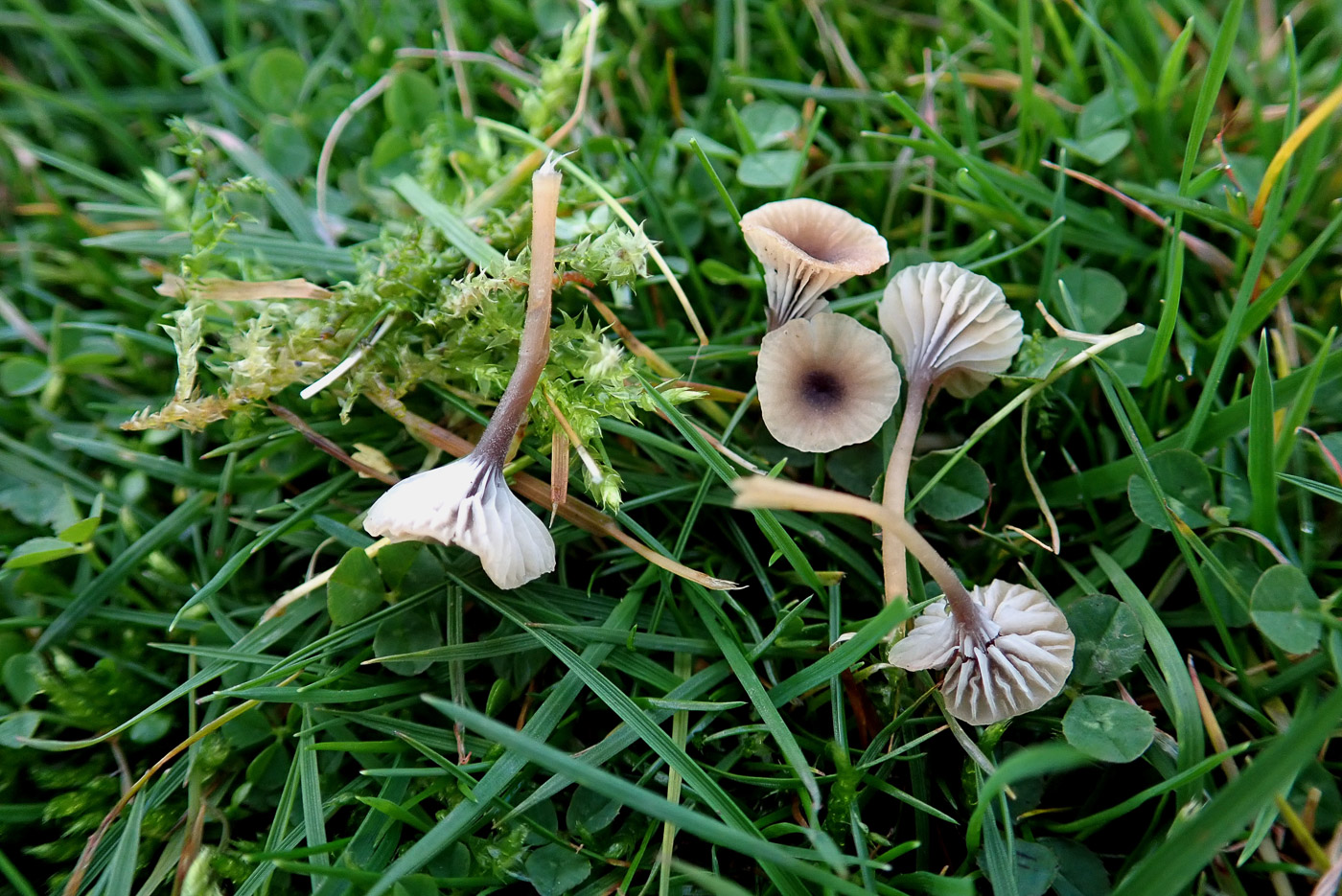
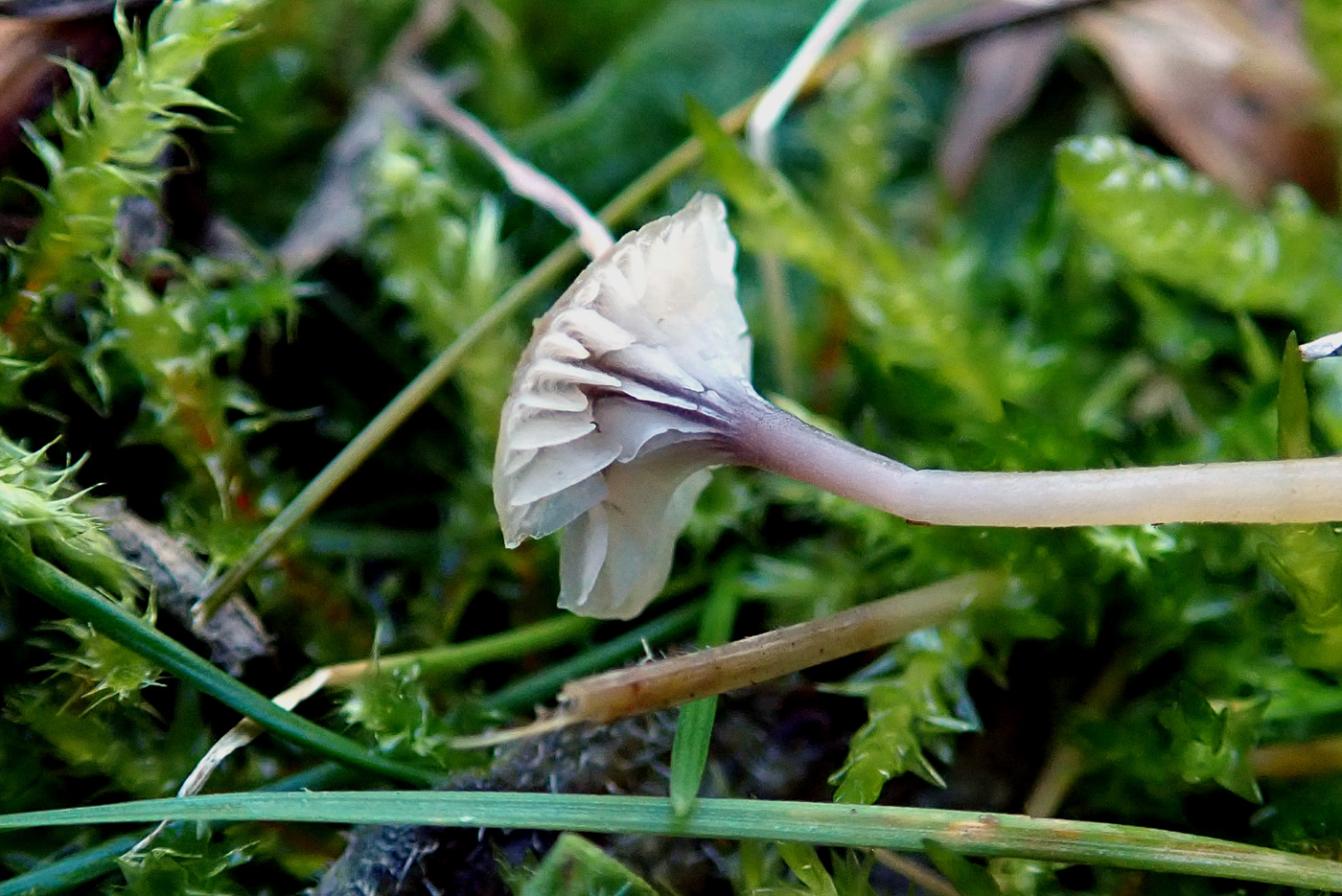 |
November 2nd Rickenella swartzii (Collared Mosscap)
Penny C. found just one of these tiny mushrooms in thick moss in Bradenham Churchyard, then several more on the neighbouring Cricket Pitch. Much less frequent than R. fibula (see photos dated Oct 24), this species is very similar in size and shape (the caps here were only 5 mm across) but instead of bright orange the caps are pale cream with a dark purple brown sunken centre, gills are white and strongly decurrent, stems are very flimsy with a purple apex. Both species occur in moss.
|
November 1st 2020
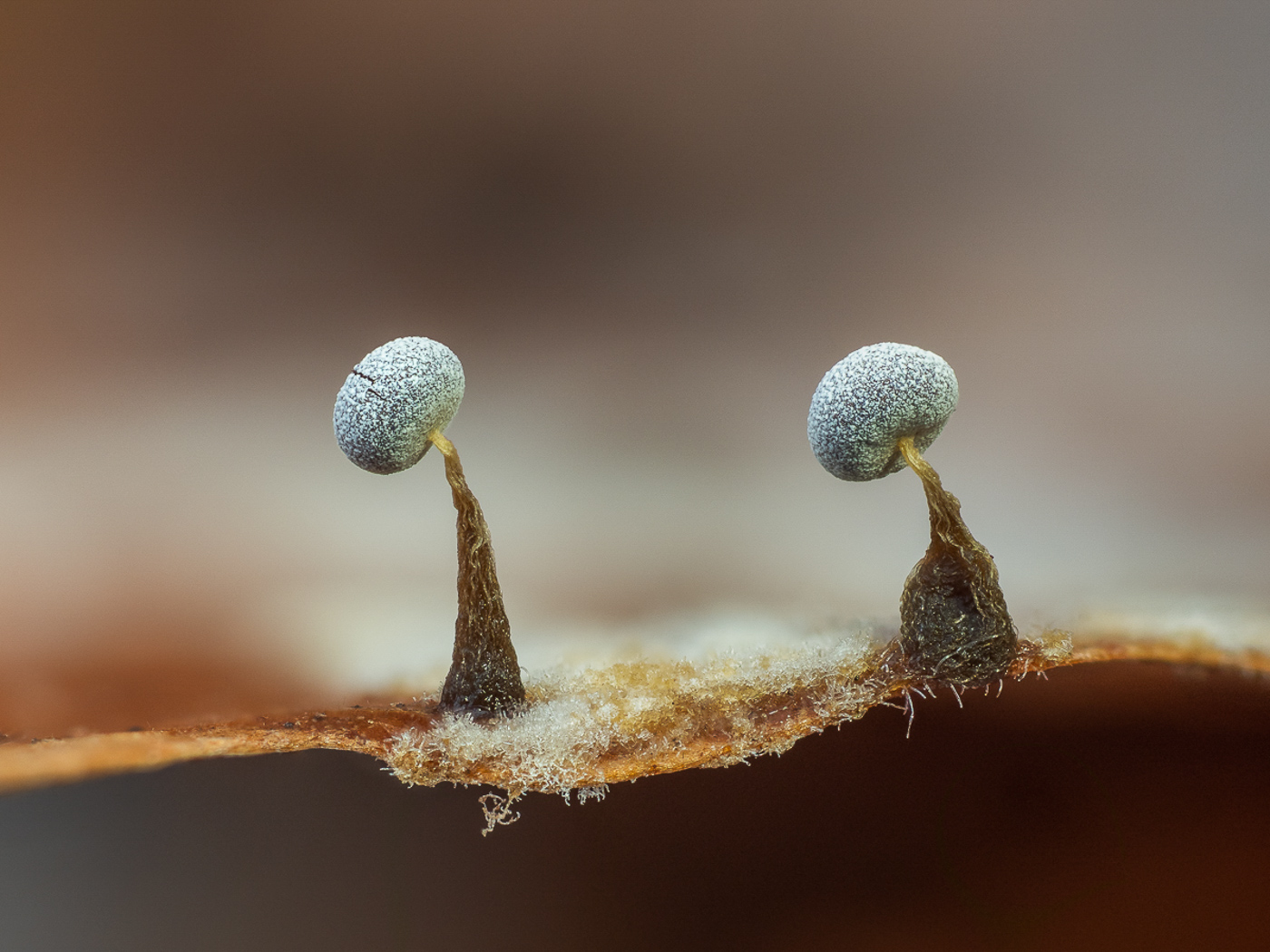 |
November 1st Physarum album (a Slime Mould with no common name)
Barry Webb found this quite common species (previously known as Physarum nutans?) in Burnham Beeches growing in Beech litter. A member of a large and difficult genus to identify to species, this particular species can with experience be named in the field because of its 'nodding' habit: the heads, covered in white crystals, tend to droop. Found sometimes in large colonies, each sporocarp (fruiting body) is no taller than 1 cm.
|
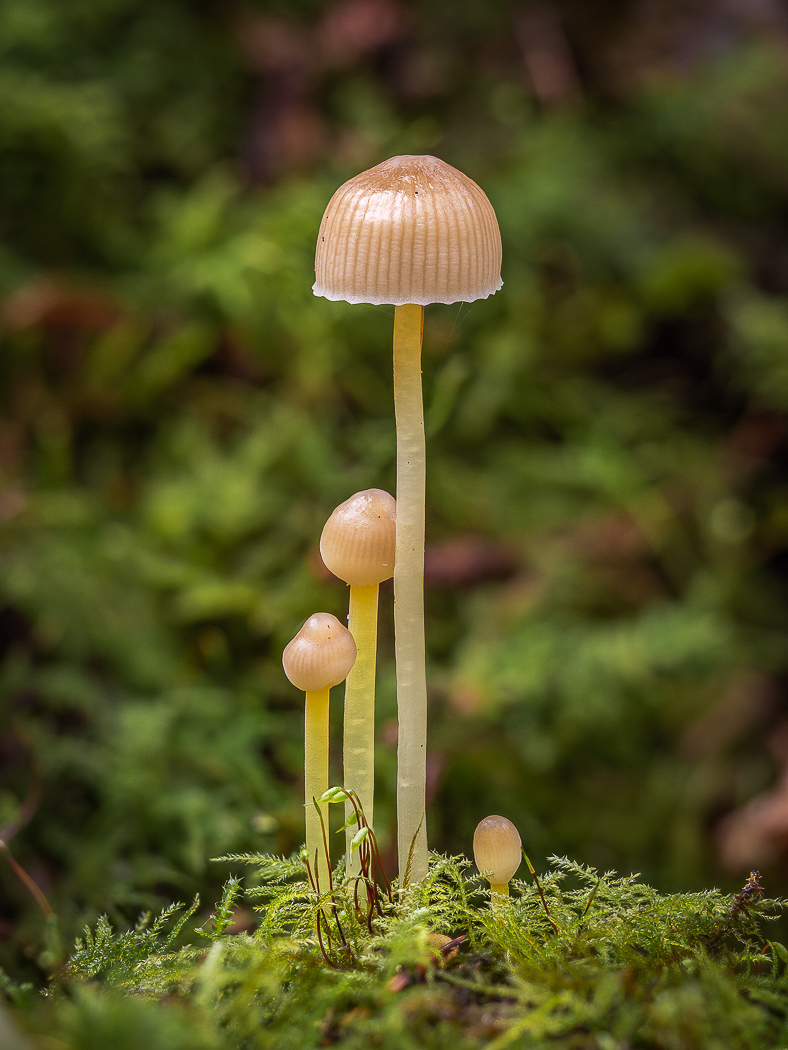
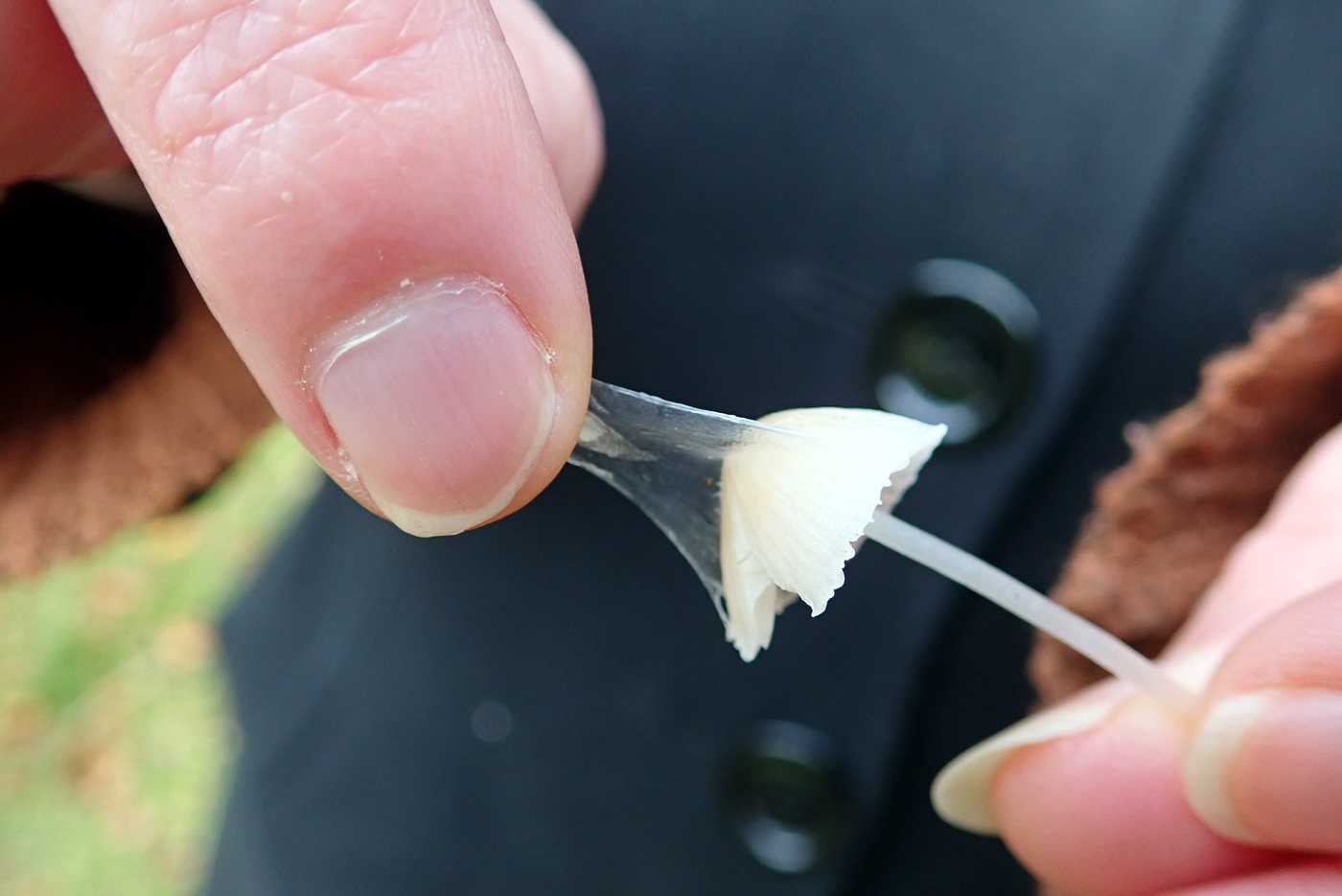 |
November 1st Mycena epipterygia (Yellowleg Bonnet)
Barry Webb noticed these little beauties on a pile of mossy branches in Penn Wood. This is a small to medium Bonnet, quite common, and can be identified in the field if one knows which features to look for. The whole fruit body is very sticky, so much so that if you pick one it sticks to your fingers and you can't drop it! With care you can peel the whole of the outer gelatinous layer away from the cap. (See photo 2 demonstrating this on a specimens found in Burnham Beeches on Nov 6th - photo Penny C.) Note also the decurrent gills and yellow stem, this often being the first feature to alert one to its identity. It occurs most commonly on conifer wood or litter but can also be found in mixed woodland
|
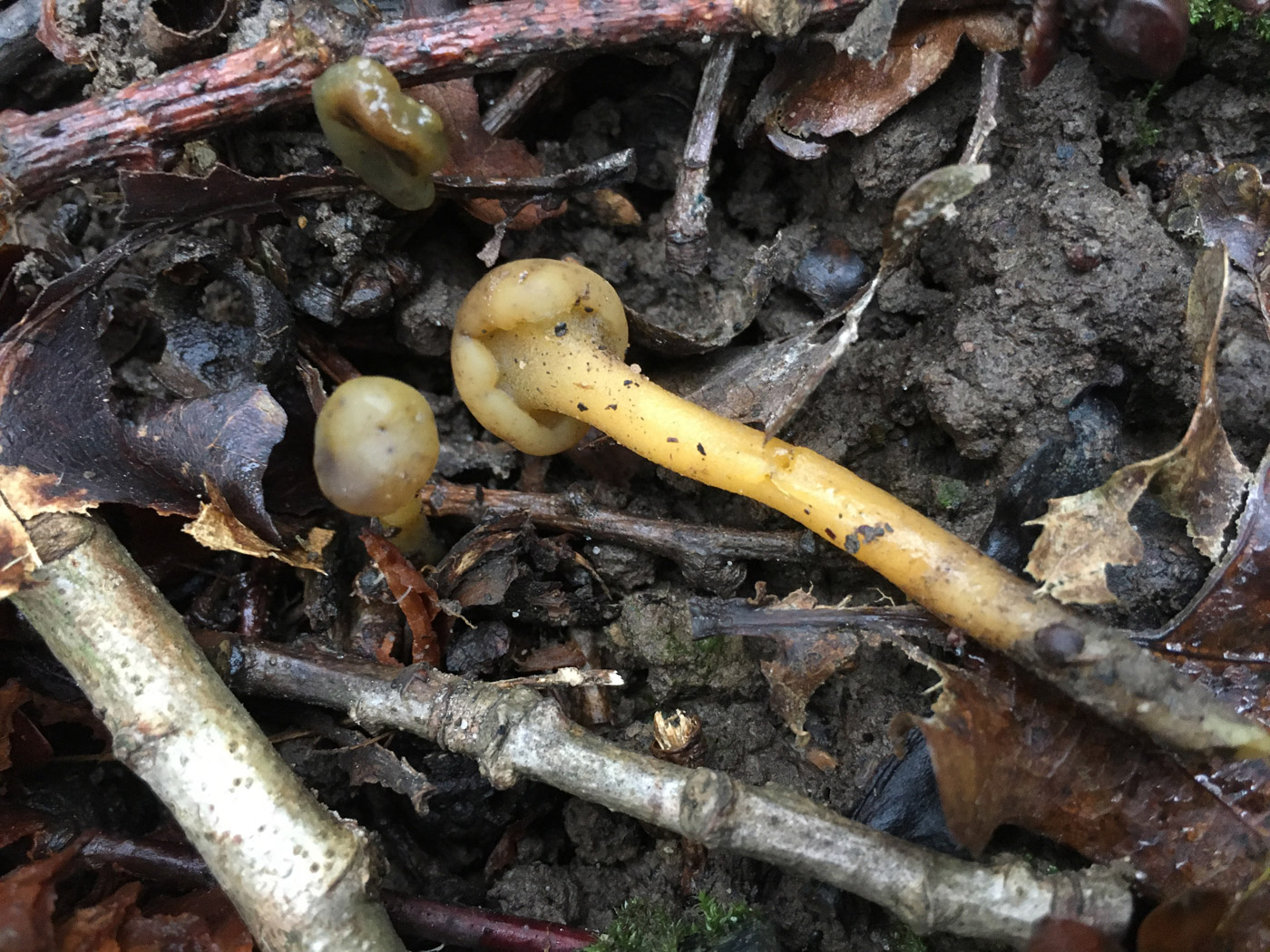
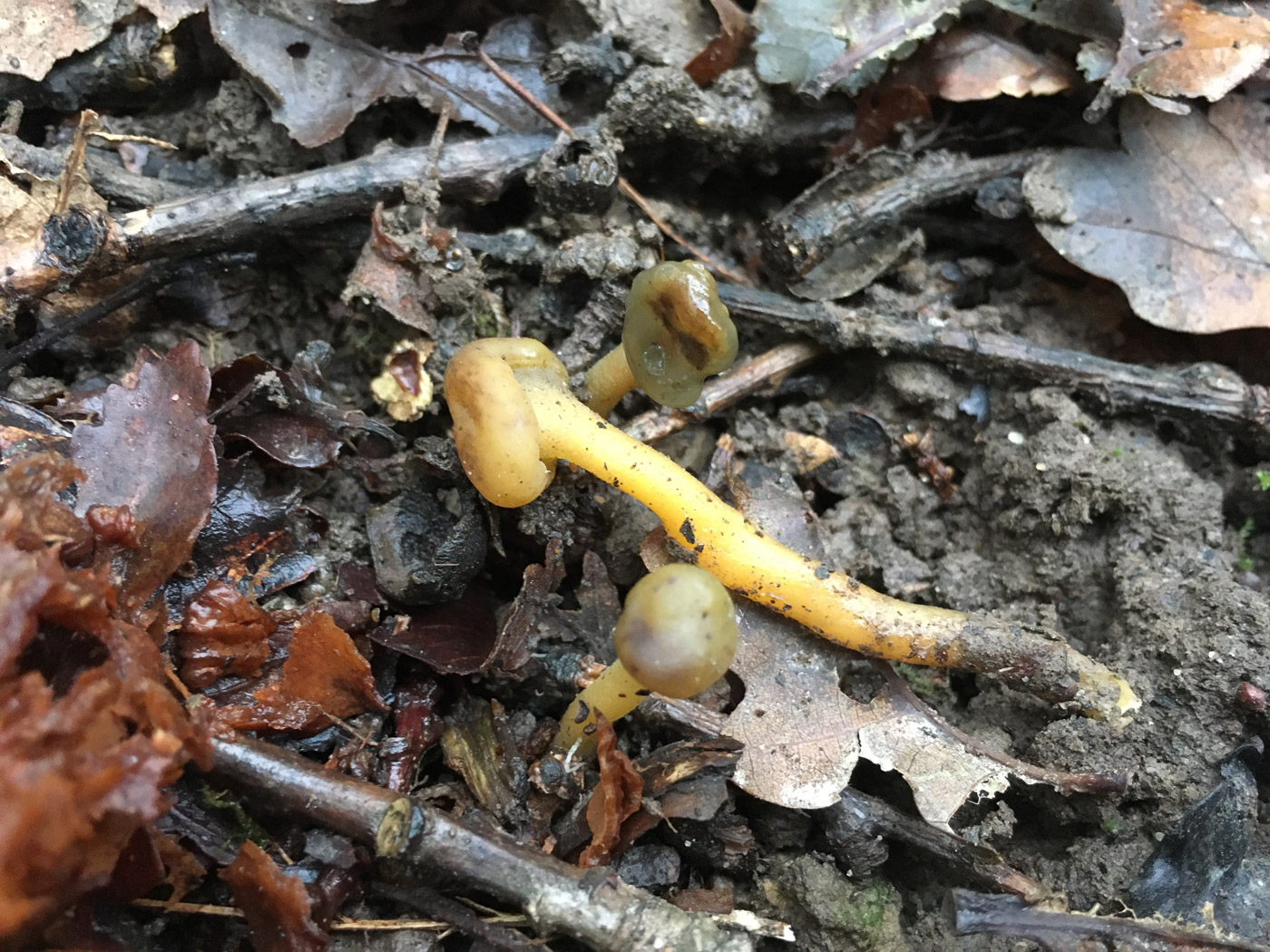 |
November 1st Leotia lubrica (Jellybaby)
Russell Ness found just a couple rather bedraggled of specimens of this interesting but quite common Ascomycete species in litter in Egypt Woods (Burnham Beeches). At first glance this looks like a young mushroom yet to open up and reveal its gills, Cantharellus tubaeformis (Trumpet Chanterelle) can look extremely similar in early stages! However, this species does not have gills and as the name suggests is somewhat rubbery and flexible, having a yellowish stem and a small yellowish to greenish head. Sometimes found in large troops in woodland or grassy litter.
|
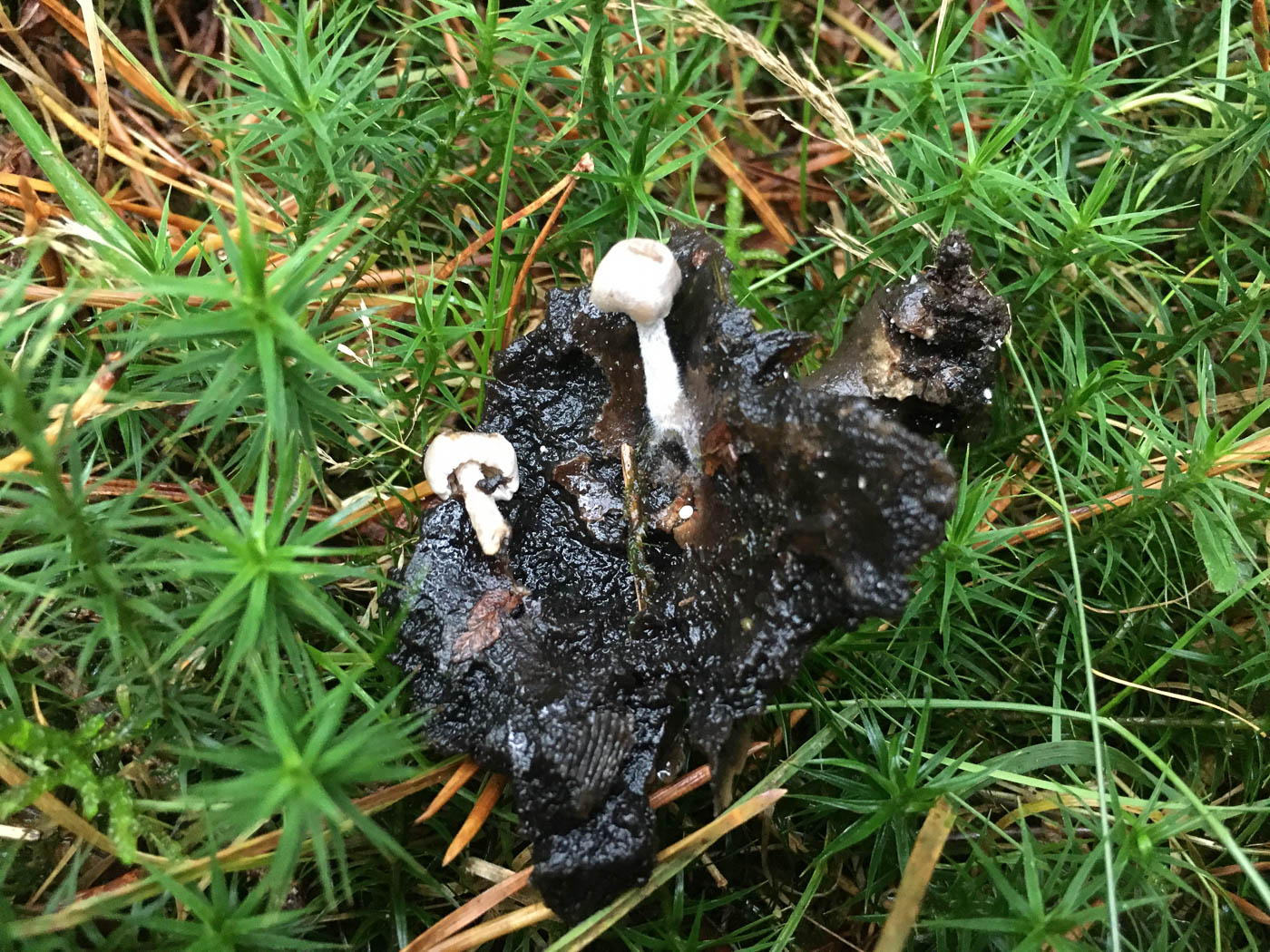 |
November 1st Asterophora parasitica (Silky Piggyback)
This is one of two similar species which Penny C. has been on the look out for because both are only found on rotting specimens of Brittlegills or Milkcaps and most commonly Russula nigricans (Blackening Brittlegill) which has been fruiting in abundance this year. It was found by Russell Ness in Egypt Woods (Burnham Beeches) and I hope we'll have better examples to share now we know that the species are beginning to fruit. The species is aptly named but this rather soggy specimen hardly does it justice. So do take a careful look at the many rotting black fungi under Beech and if you find small white mushrooms growing on them, take careful note of the cap surface because in this species the cap is smooth but A. lycoperdoides has a dusty brownish coating. In some years both species are common, in others they're not seen at all - that's fungi for you!
|
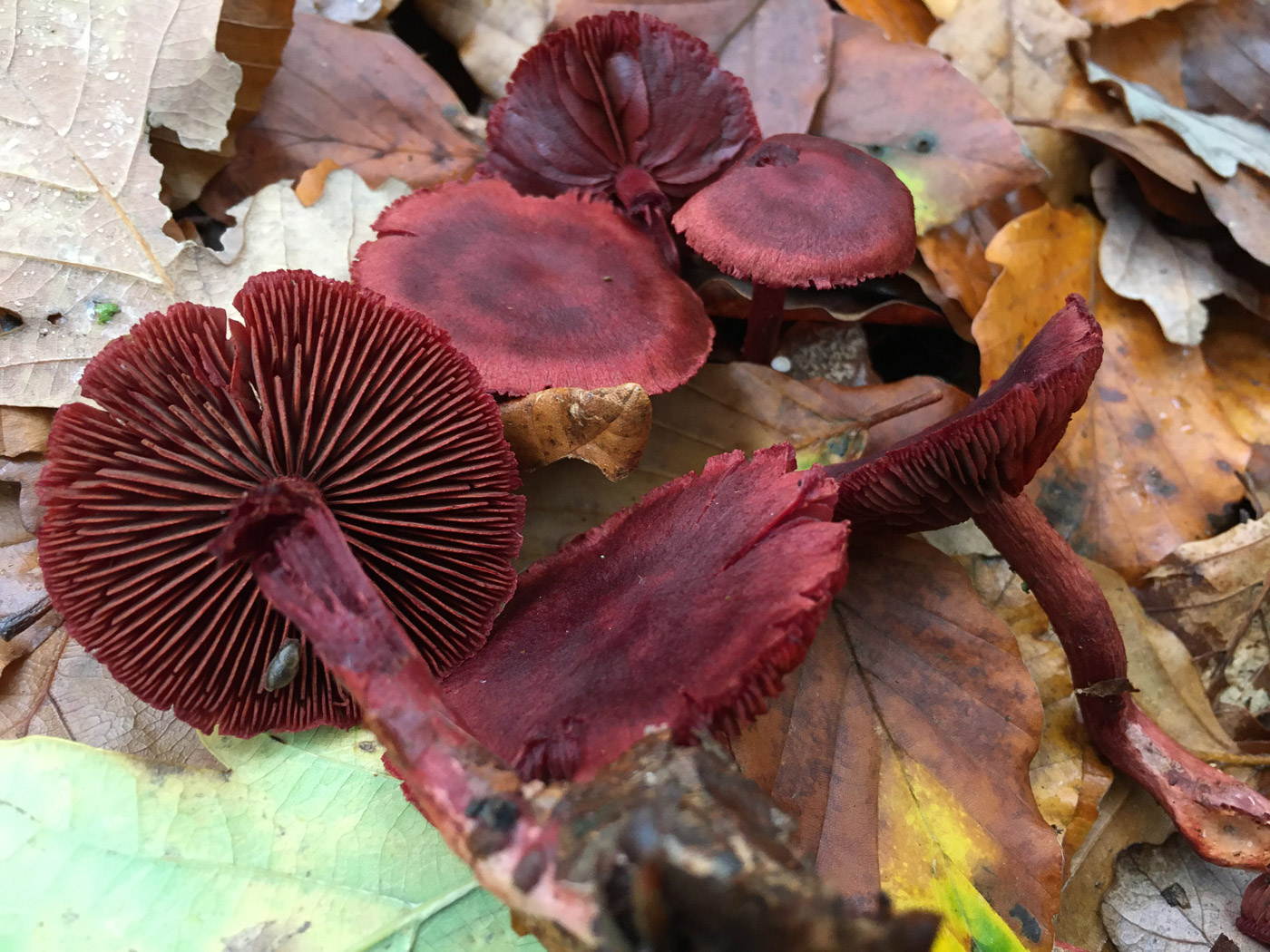 |
November 1st Cortinarius puniceus (Bloodred Webcap)
Russell Ness found this stunning collection under Beech in Egypt Woods (Burnham Beeches). We have a previous rather damaged specimen dated Oct 23 (see notes under that collection for more information) but this photo was well worth including in its own right as an example of a such a distinctive species.
|
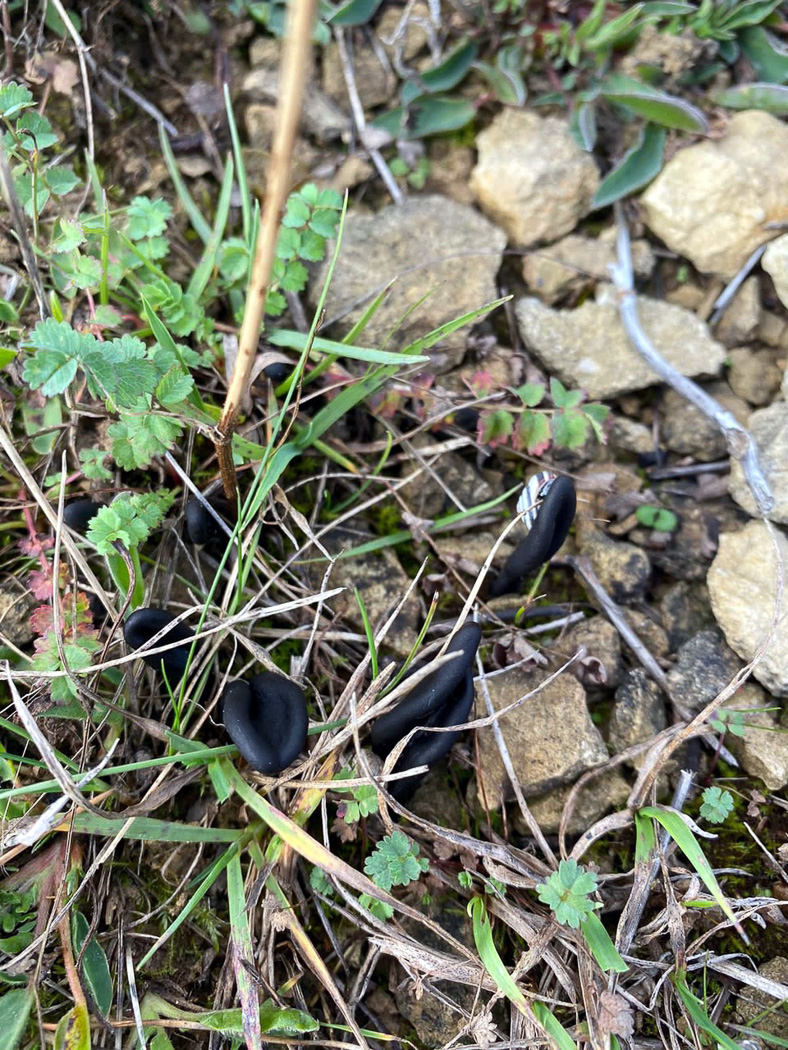
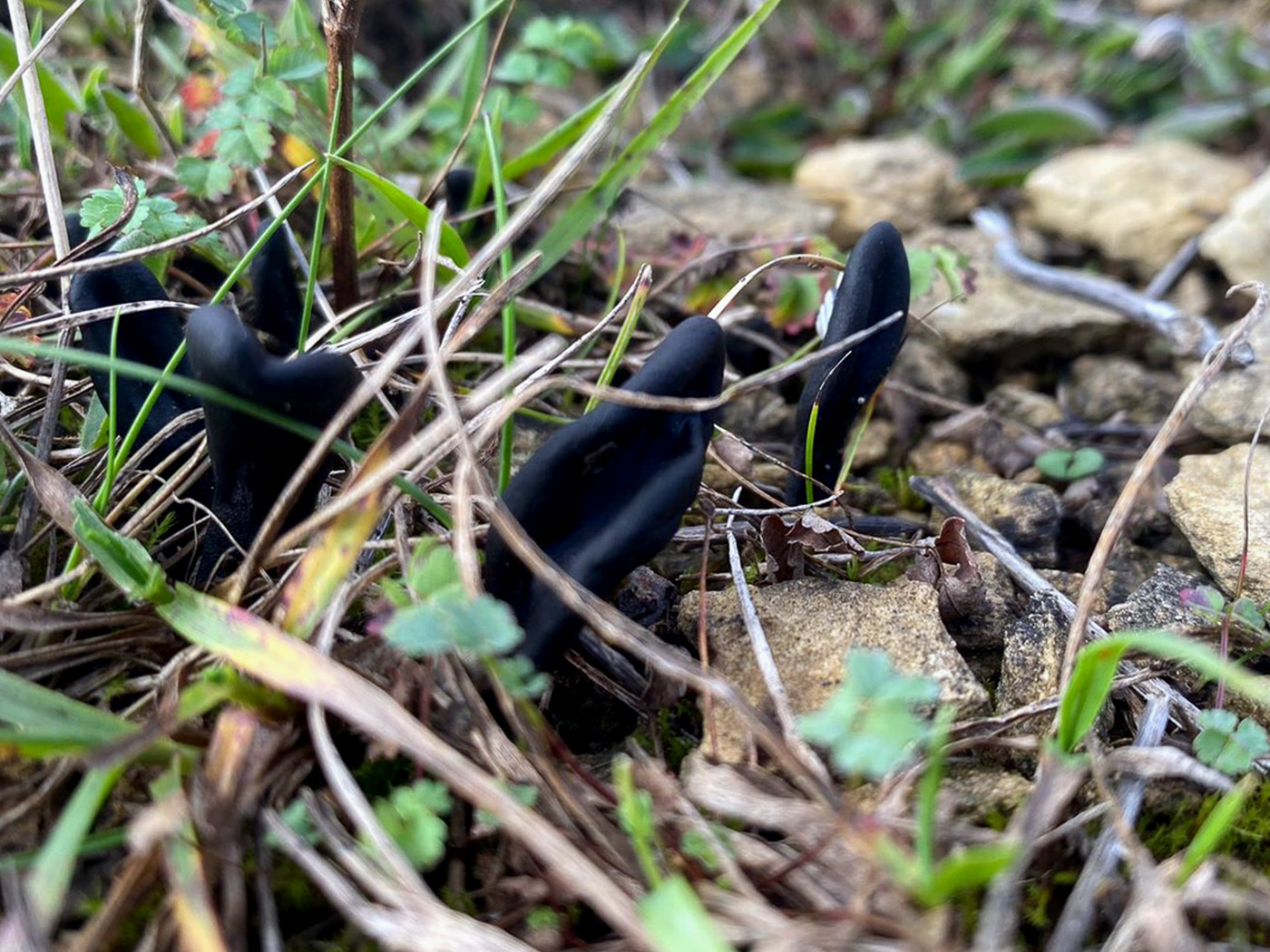 |
November 1st Geoglossum cookeanum (an Earthtongue with no common name)
Our first Earthtongue was found by Rebecca Hiorns at Stonepit Field, Gt. Linford near Milton Keynes. This is another grassland species and the genus superficially resembles the much commoner Clubs apart from being black (and easily overlooked!). Identifying to species with safety needs a scope so naming this particular collection is not by any means 100% secure, but the smoothness and shape of this collection makes it likely to be G. cookeanum, possibly the commonest and most regularly recorded species.
|
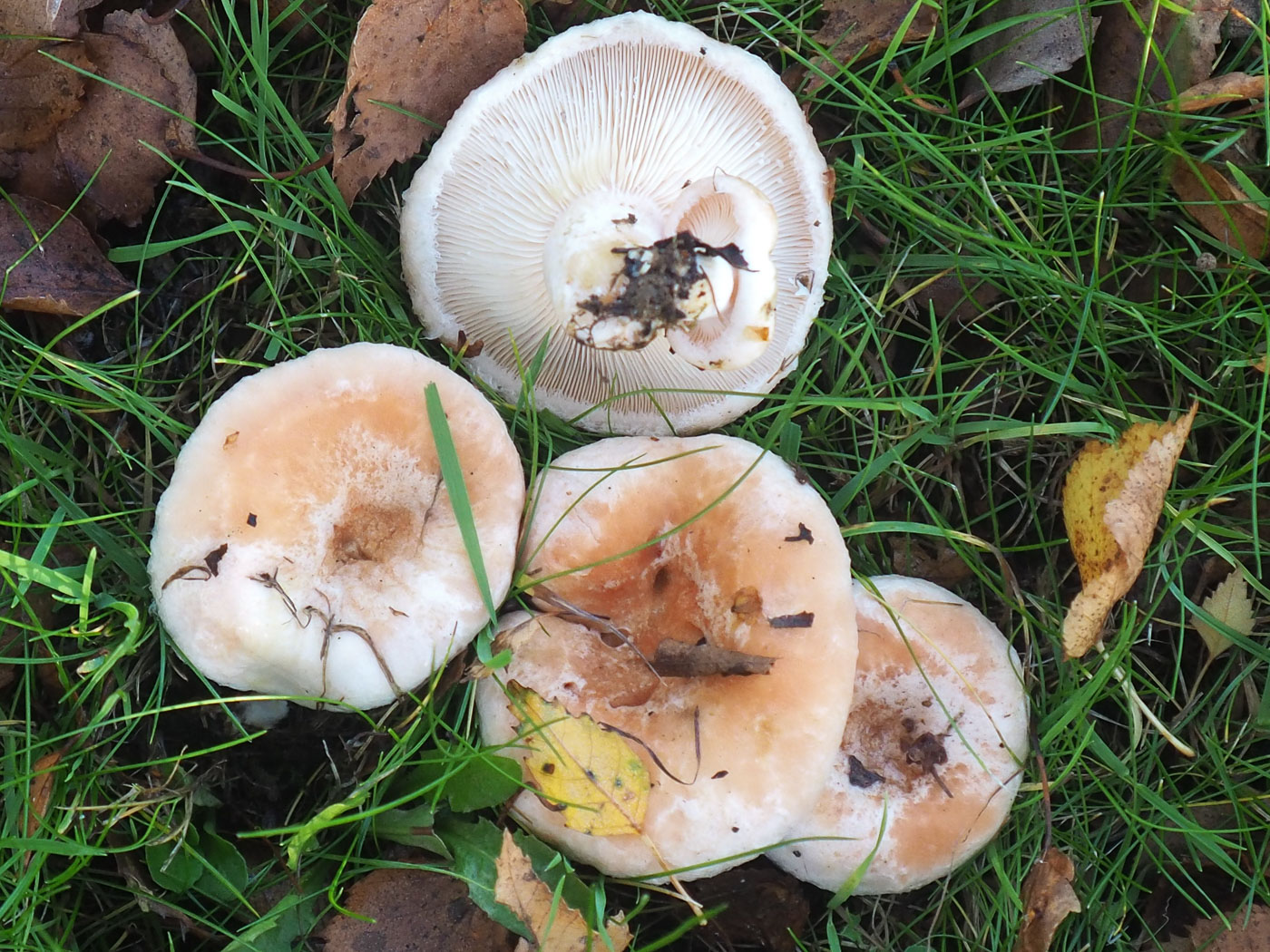 |
November 1st Lactarius pubescens (Bearded Milkcap)
John Catterson noticed this late fruiting group of Milkcaps under Birch in a churchyard in High Wycombe. This species is like a paler version of L. torminosus (see photo dated Sept 18) which also is host specific to Birch. Note the finely hairy surface particularly at the margin which it tightly inrolled when young. Caps can get to 6 cms across or so and have pale flesh pink tones. L. pallidus (which we've missed for some reason) is a similar colour and shape but entirely smooth and is host specific with Beech.
|
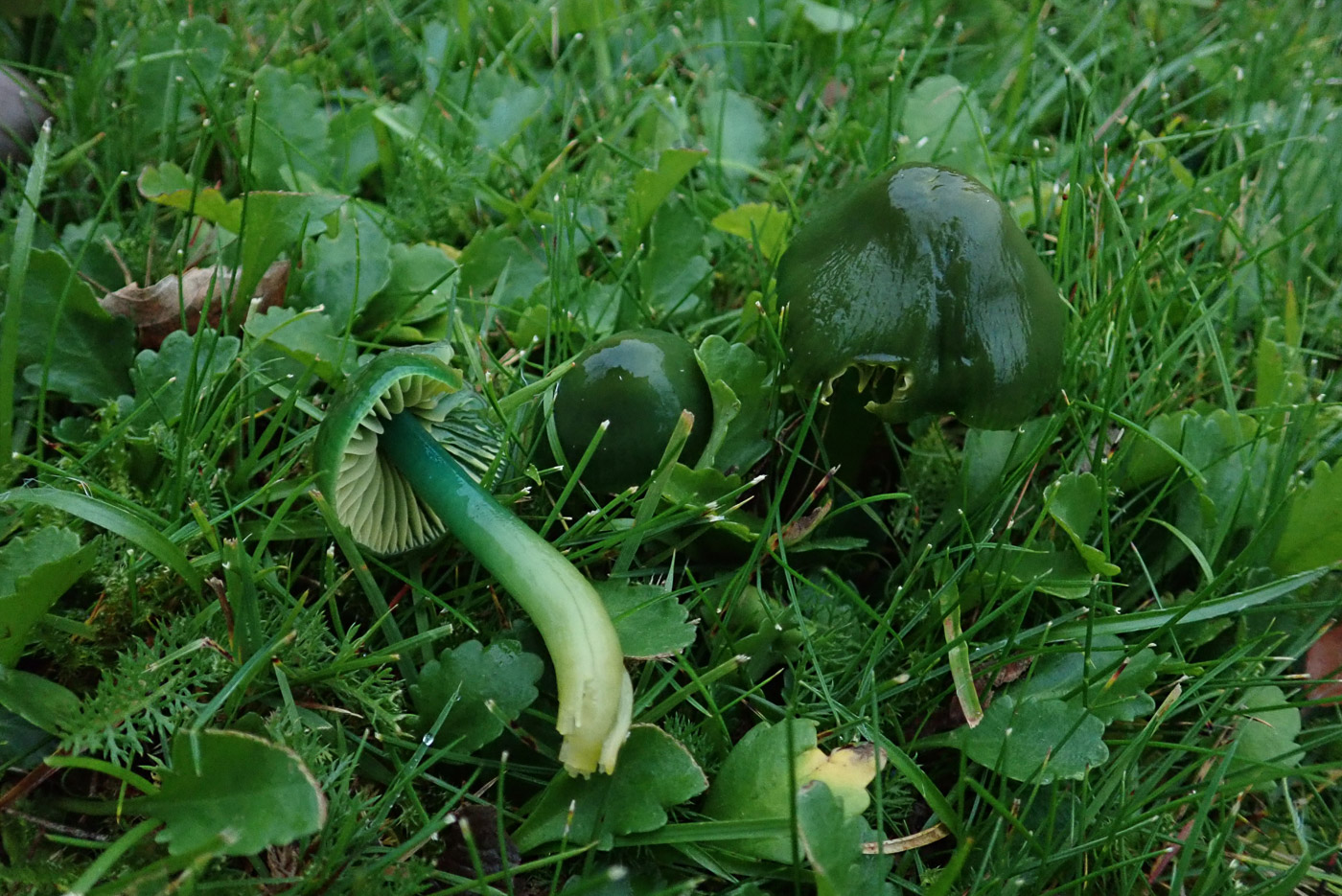
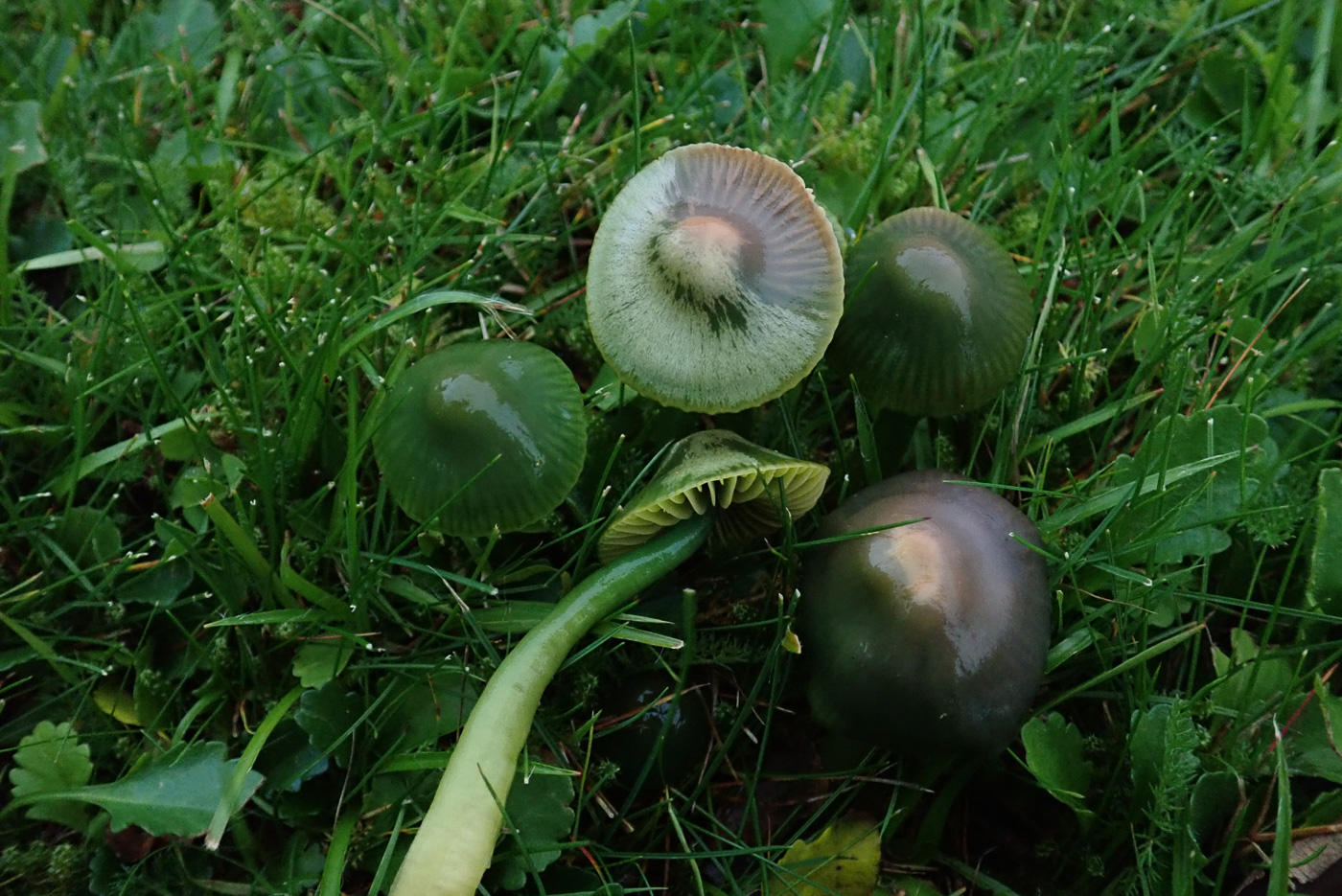
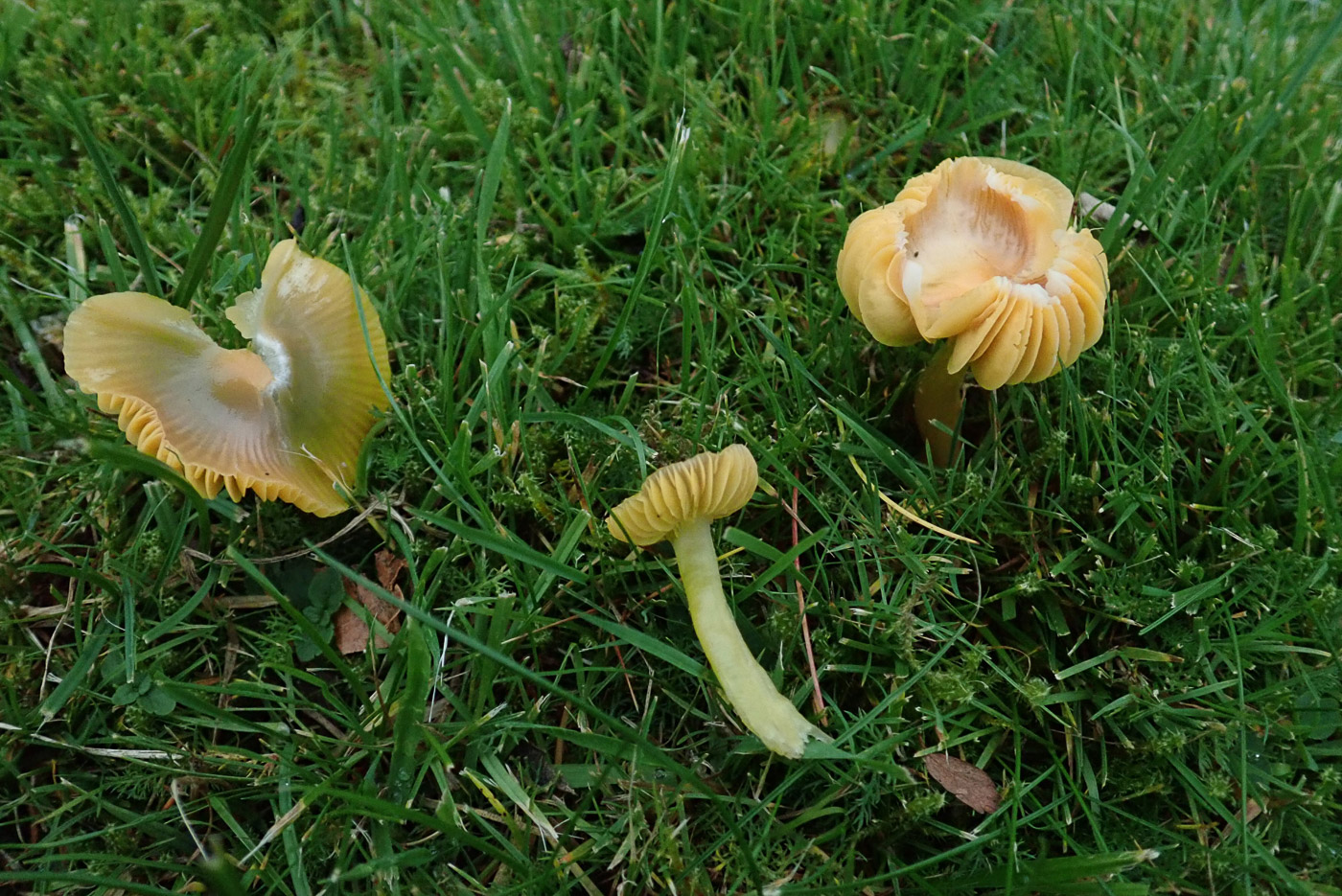 |
November 1st Gliophorus (= Hygrocybe) psittacinus (Parrot Waxcap)
We already have photos of this species dated Sept 08 and Oct 03, but today at the Churchyard at Holmer Green Penny just couldn't resist this stunning collection! The darker caps were so well camouflaged by the surrounding vegetation, some were showing one of the species' variation in colour turning violaceous, others were fading to yellowish with upturned caps - typical when mature. What a beautiful species!
|
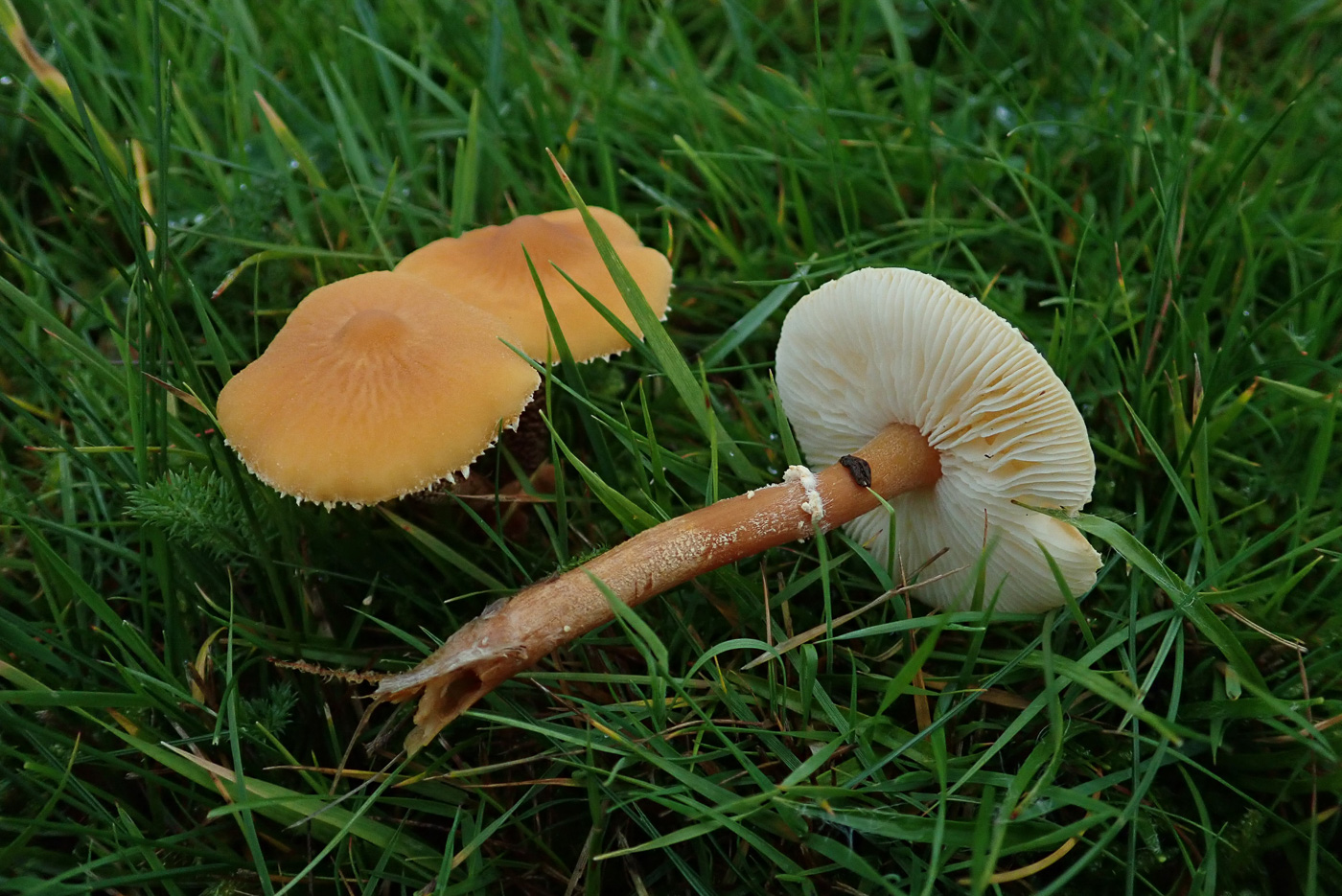
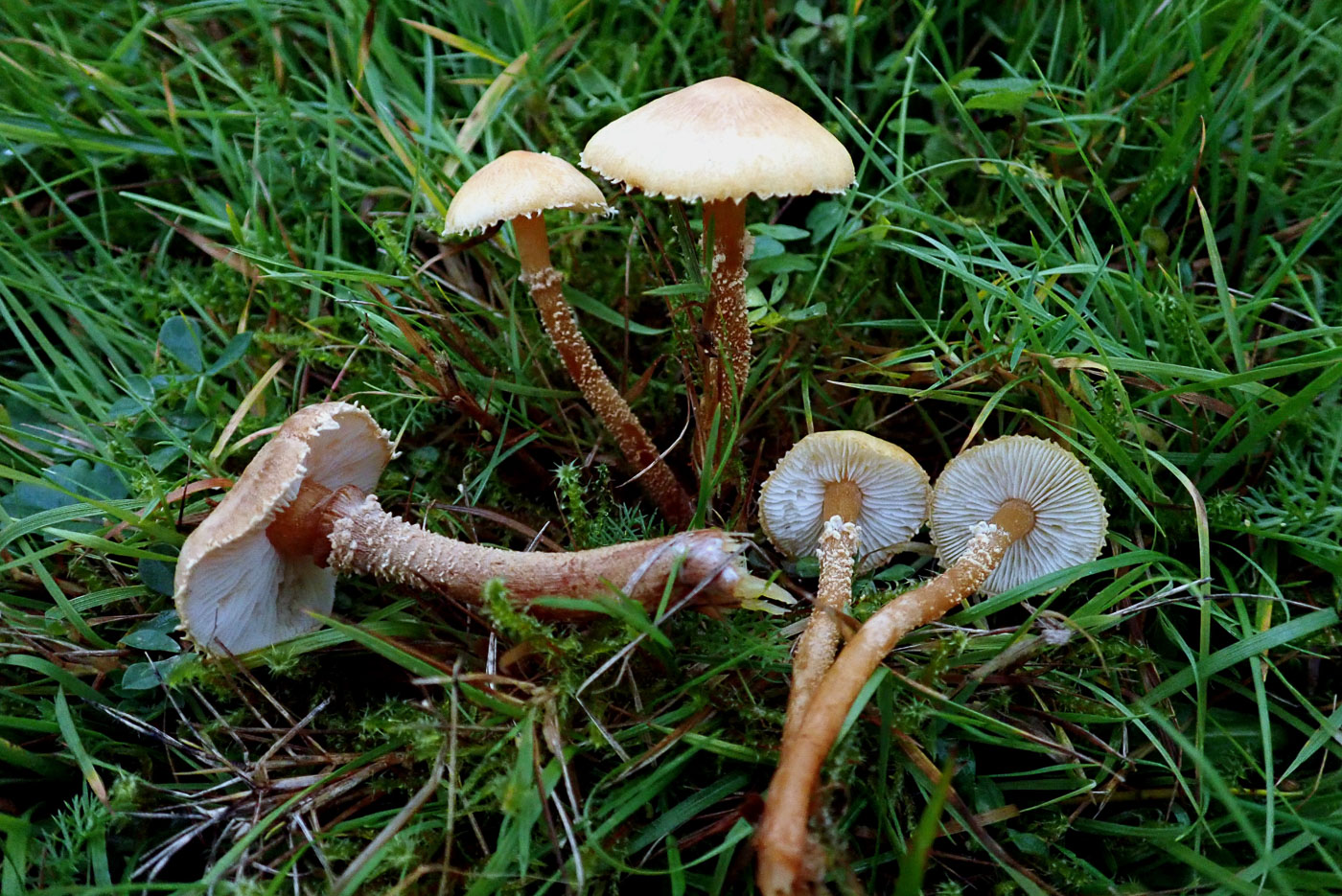 |
November 1st Cystoderma amianthinum (Earthy Powdercap)
In the Churchyard at Holmer Green Penny found amazing numbers of this pretty quite common grassland species, having seen it only once recently in other suitable sites. Caps vary in colour from pale yellowish to deep cinnamon as here, are slightly radially pleated in the centre and are characterised by their scurfy dusty surface which leaves white hanging remnants around the rim - seen clearly here though in many cases these had been washed off by rain. The close connection with the genus Lepiota can be seen in the gills which are similarly white, crowded and free of the stem top. The stem is concolorous or darker than the cap, smooth above the white ring zone and below that strewn with white floccs which again may be removed by rain.
|
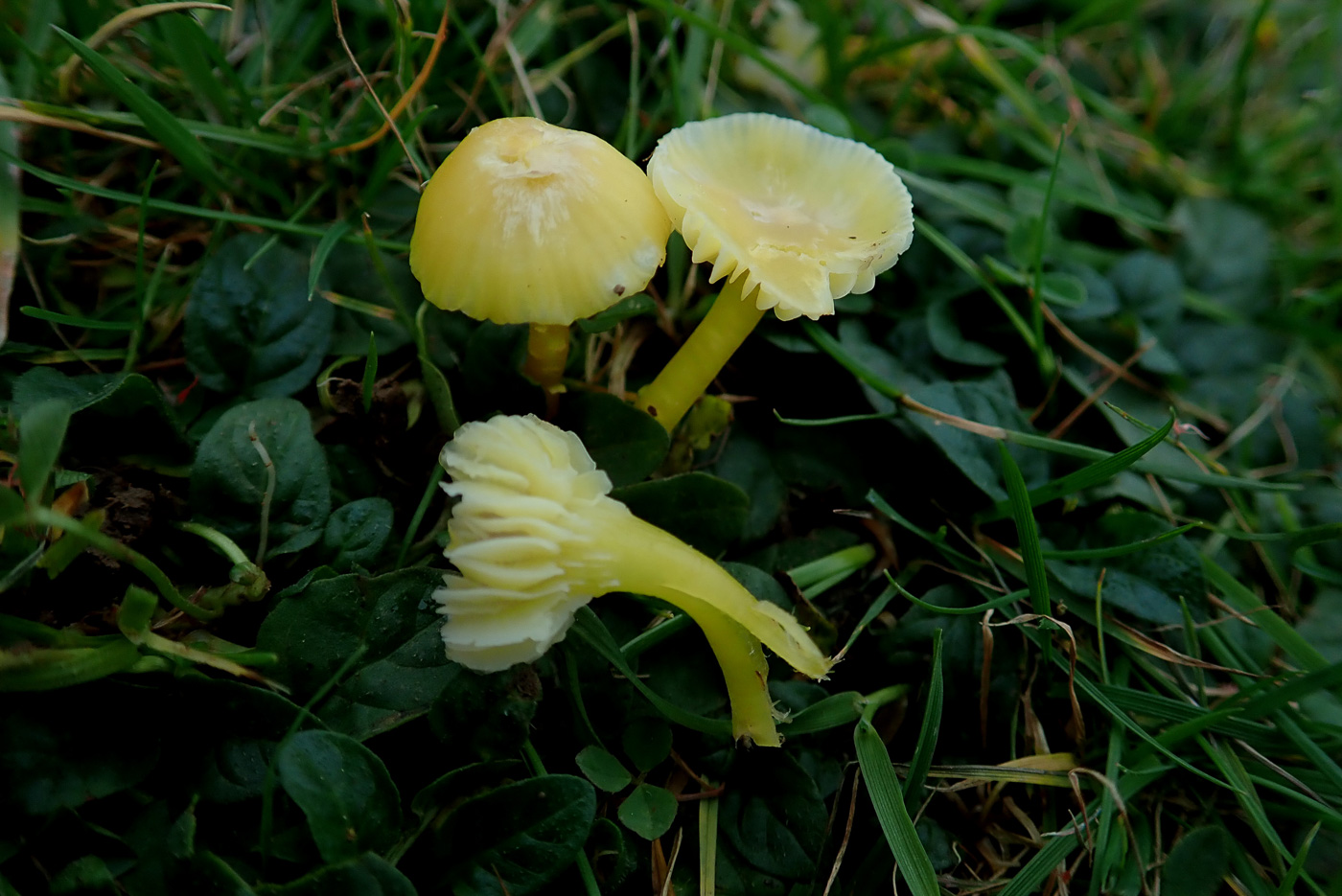
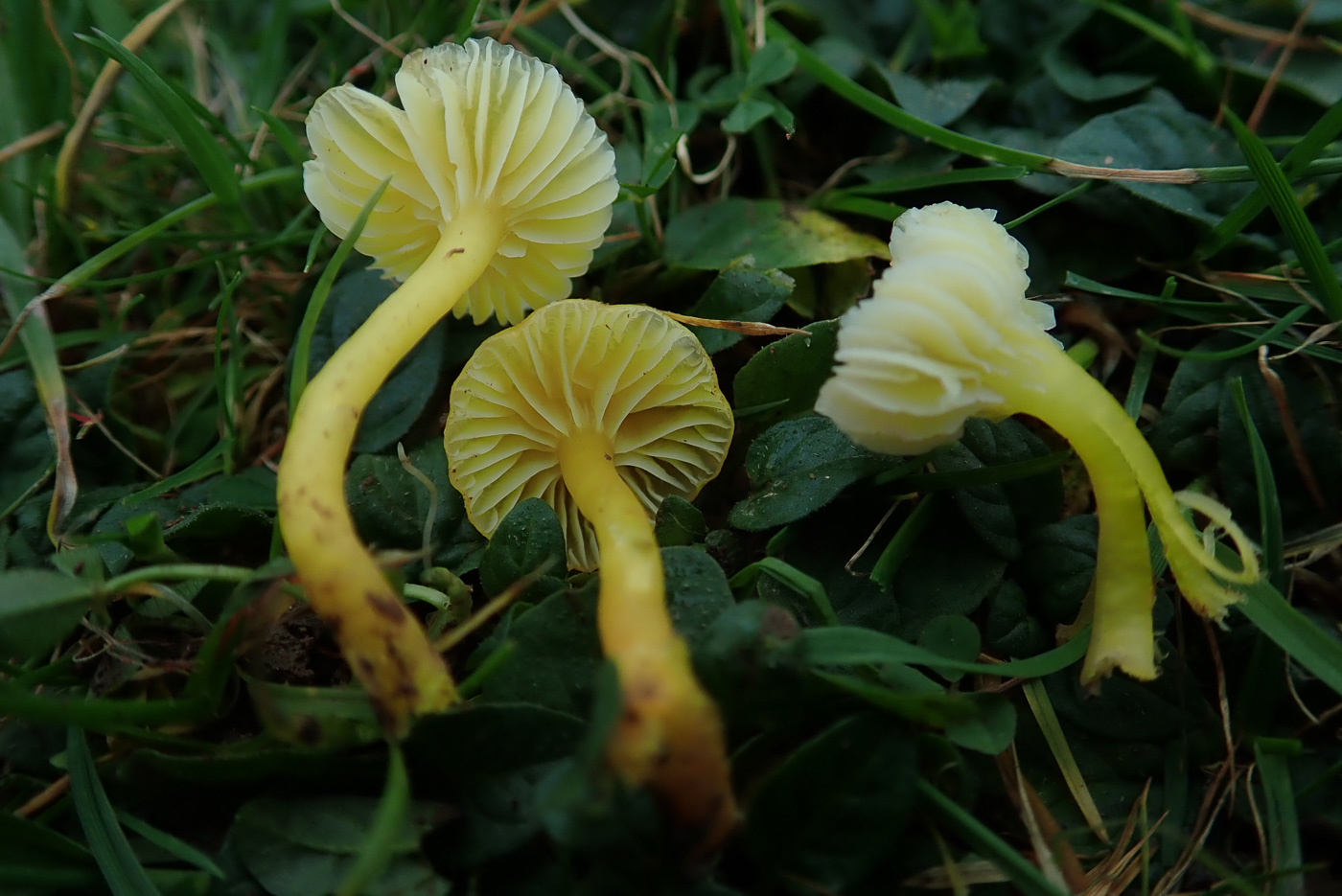 |
November 1st Hygrocybe ceracea (Butter Waxcap) 
Another Waxcap Penny C. found on the Penn Street Cricket Pitch was this one - just these three tiny specimens! Like a smaller version of H. chlorophana (see photos dated Oct 03 and 28) and very possibly often misidentified as that species, caps get no larger than 3 cms across (H. chlorophana can be up to 7 cms across), gills are quite crowded and often decurrent as seen here and stems are seldom grooved as in H. chlorophana. Both species have sticky bright yellow caps but H. ceracea has a dry stem and in the larger species stems are often greasy though not really sticky. There are further microscopic differences to confirm which of these two you have.
|
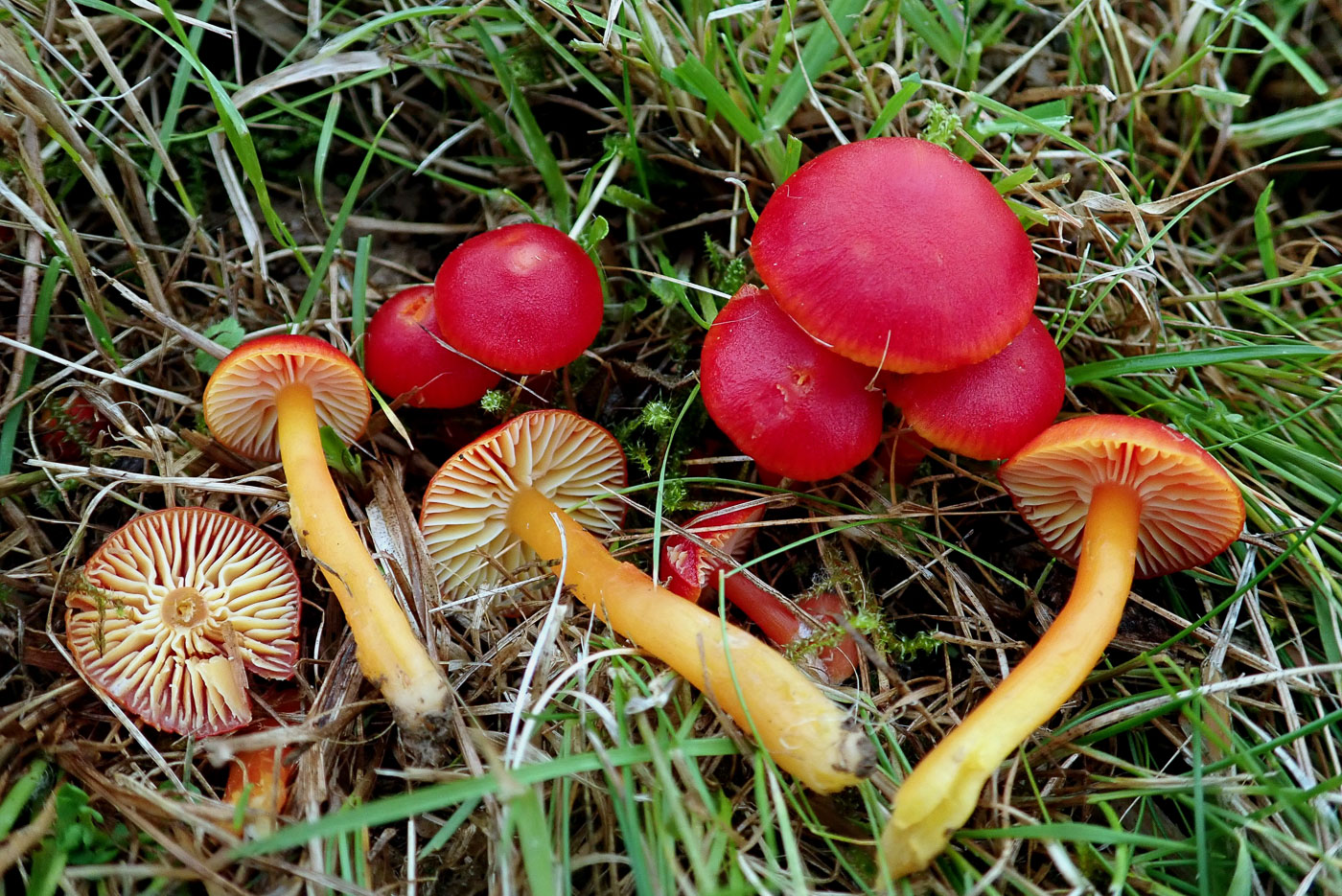 |
November 1st Hygrocybe coccinea (Scarlet Waxcap)
This common and stunningly intense red Waxcap is usually in good numbers on the Penn Street Cricket Pitch at this time but today Penny C. struggled to find it, eventually coming across just a couple of clusters in the longer grass. Caps can get to 5 cms across and are greasy but not sticky, likewise the stem. Gills can be red of yellow as here and are quite widely spaced. This is another species lacking a distinctive smell.
|
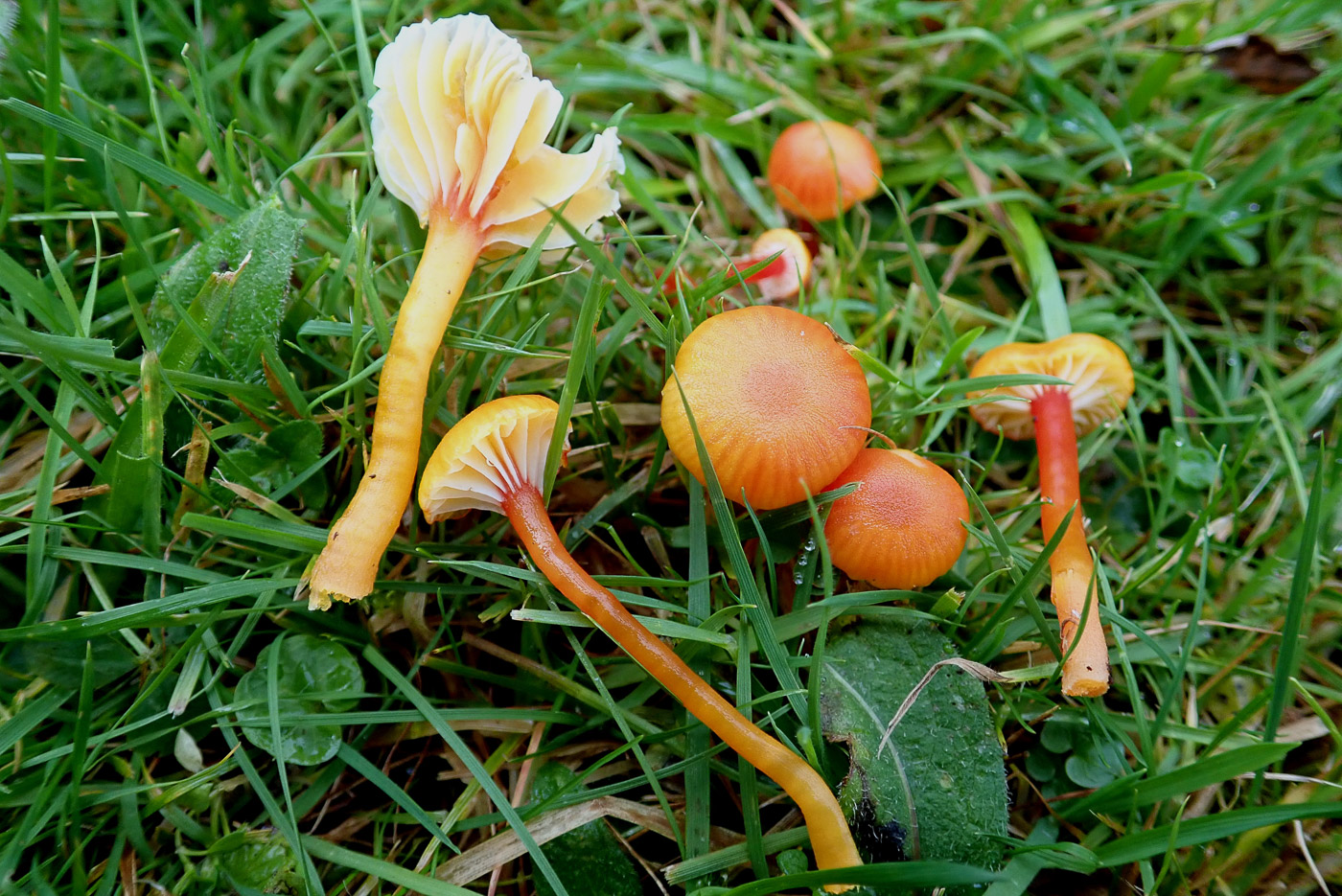 |
November 1st Hygrocybe insipida (Spangle Waxcap)
Penny C. found this small and pretty Waxcap in Penn Street Churchyard. This quite common species can be recognised by its small cap (often only 1 cm across) but rather long stem in comparison. Gills are usually decurrent and colours are very variable: yellow, orange to red but nearly always with red at the top of the stem which contrasts with the paler yellowish gills. It lacks a distinctive smell.
|
 |
November 1st Clitocybe dealbata (Fool's Funnel)
Whilst searching Penn Street Cricket Pitch for Waxcaps, Penny noticed this pale pink cluster and was momentarily confused. They were clearly not Waxcaps and it took a moment before she realised they were very young specimens of C. dealbata (= C. rivulosa for many but this is till disputed!). She then found some more mature caps nearby to add to the photo. See also our photo dated Oct 20 for another example of this common lawn species.
|
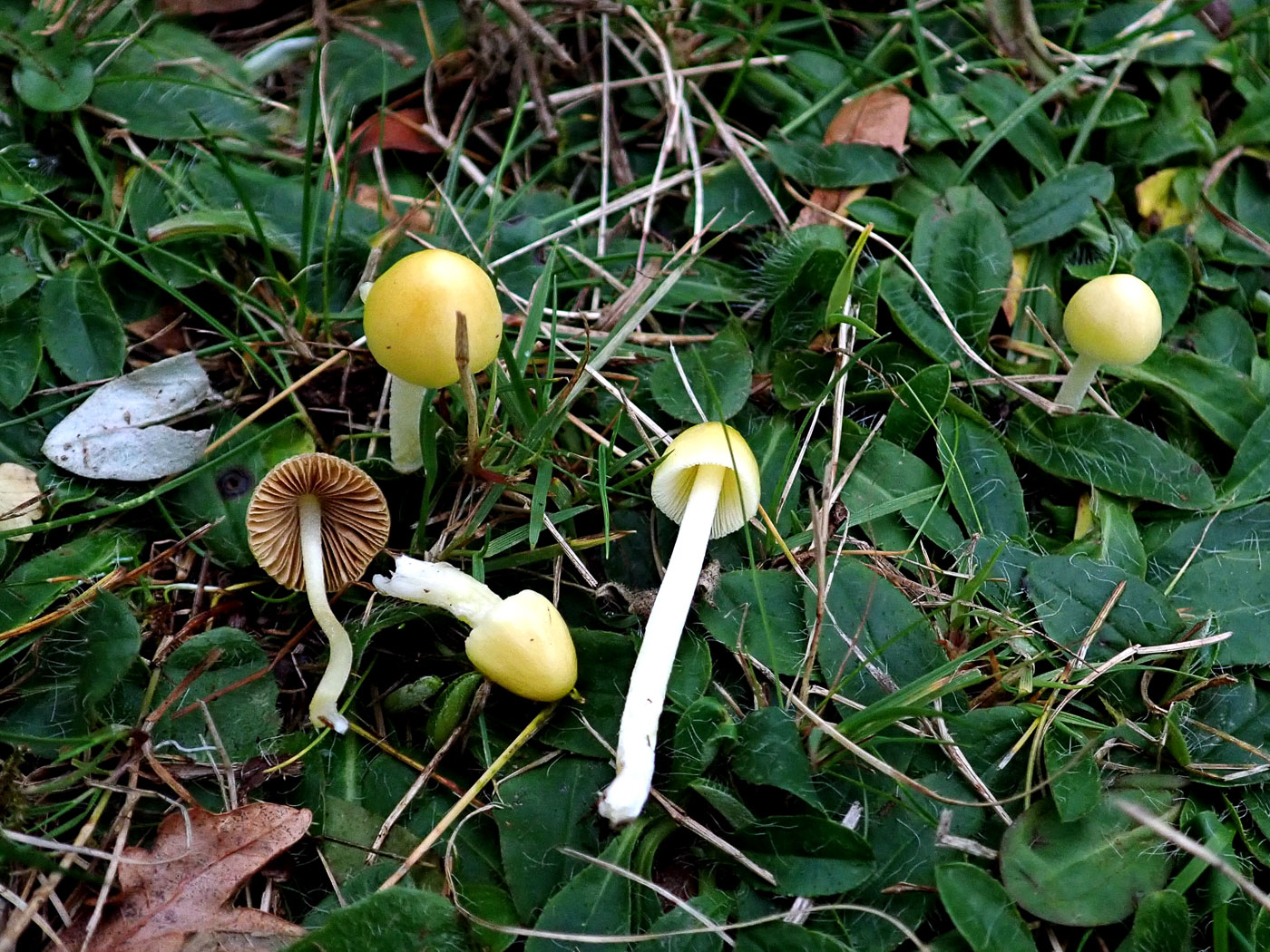 |
November 1st Bolbitius titubans (Yellow Fieldcap)
We do have previous photos of this delicate grassland species (dated Sept 29) but when Penny C. saw these in Winchmore Hill Common she couldn't resist including them again. Only a couple of cms high, they were at the perfect rounded conical stage when caps are yolk yellow and gills are still white, with one older specimen conveniently nearby to show how the gills darken as the spores mature.
|
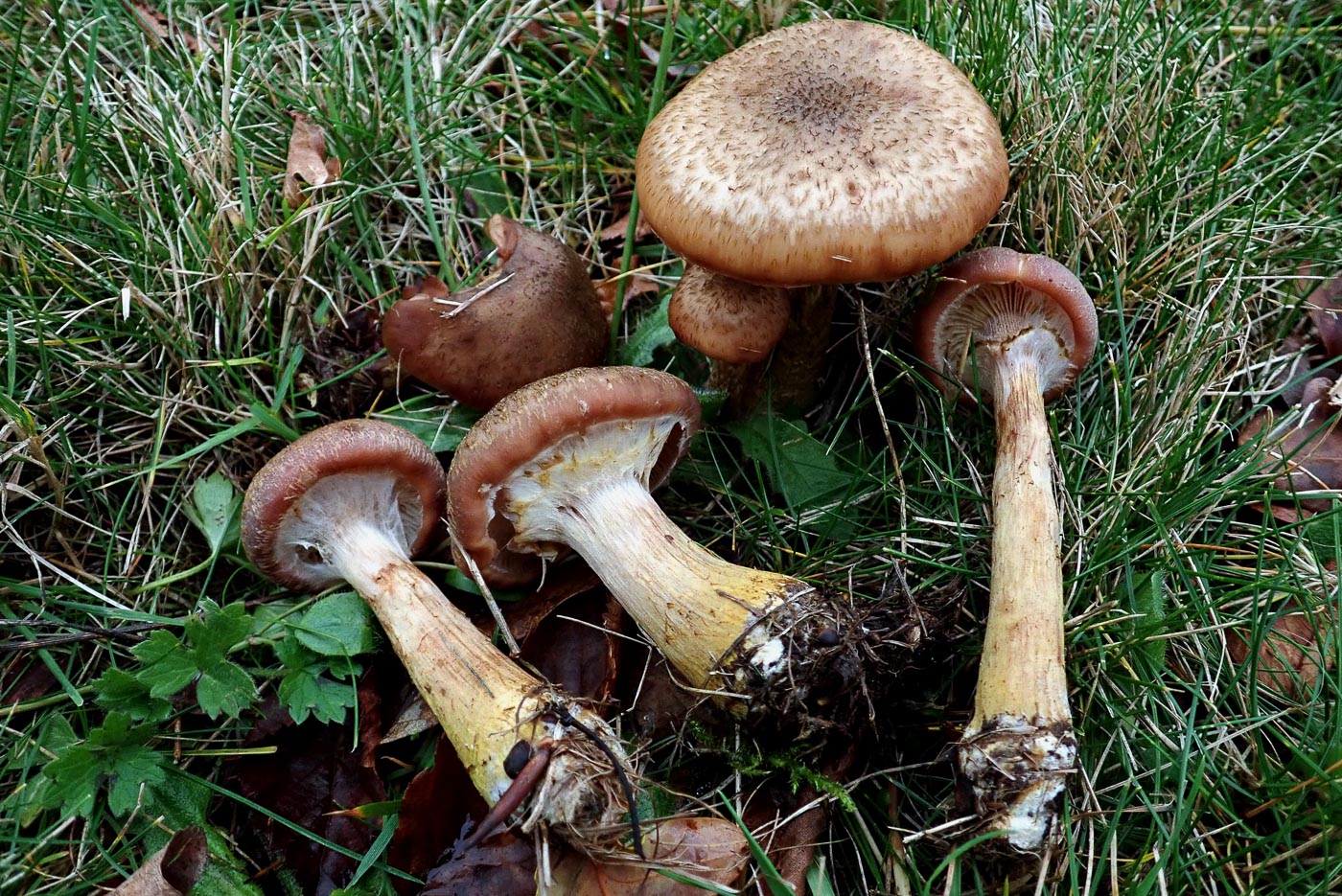
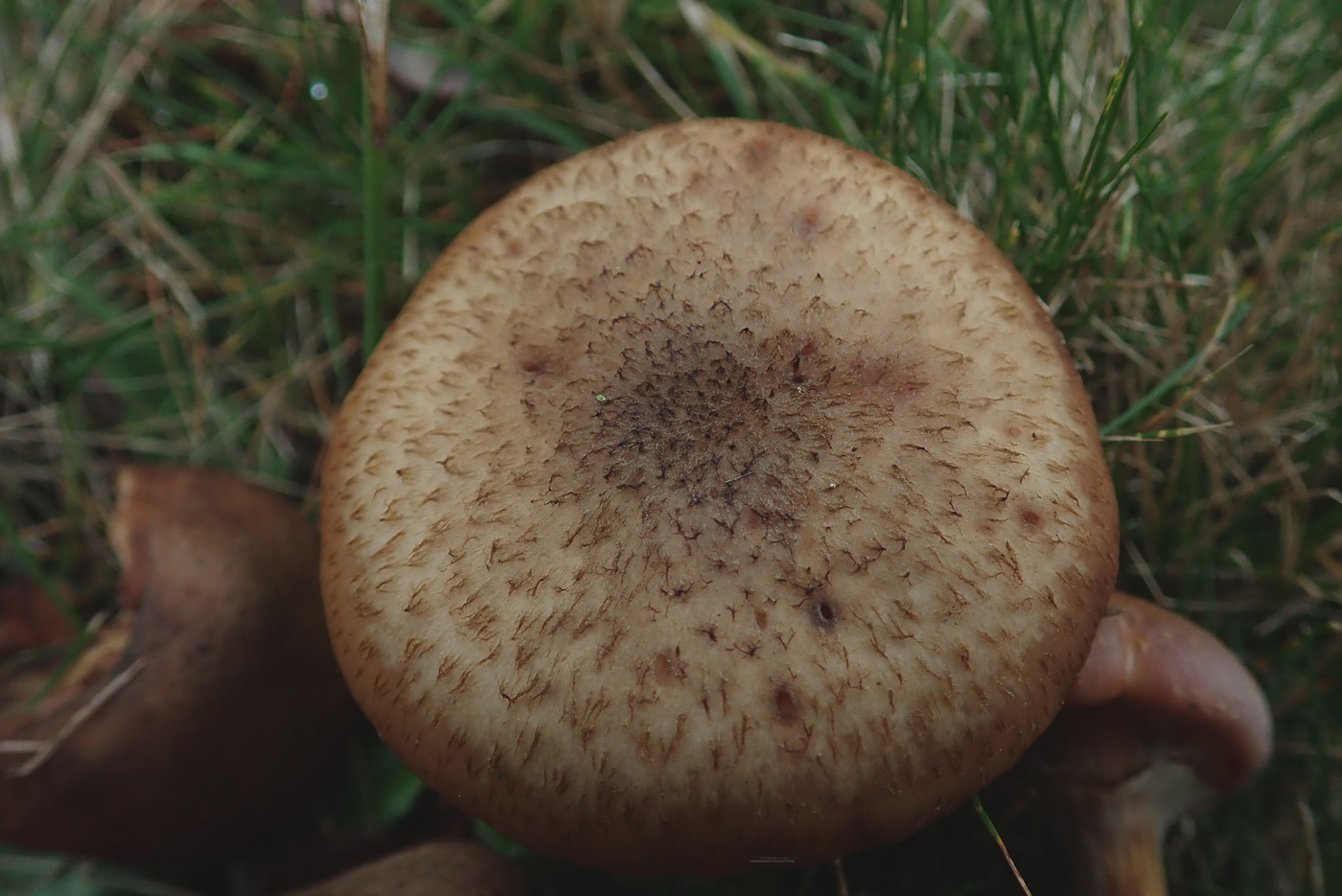 |
November 1st Armillaria gallica (Bulbous Honey Fungus)
Penny C. had thought it was now too late to find this species to compare with A. mellea which finished fruiting a week or so ago. However, on the edge of Winchmore Hill Common under Oak she found these examples. In contrast to A. mellea, this species of Honey Fungus has a swollen stem base which develops yellow tints (in A. mellea the stem is cylindrical with no yellow at the base). The cap tends to be darker brown, lacks the yellow tones of A. mellea and has more distinct scales. The stem ring can have a few darker flecks on the underside as seen here, but do not confuse with A. ostoyae - a third similar but rarer species which has a distinct row of darker scales on the ring underside, lacks the swollen stem base which furthermore does not develop yellow tints. See photos of A. mellea to compare, dated Sept 27.
|
October 31st 2020
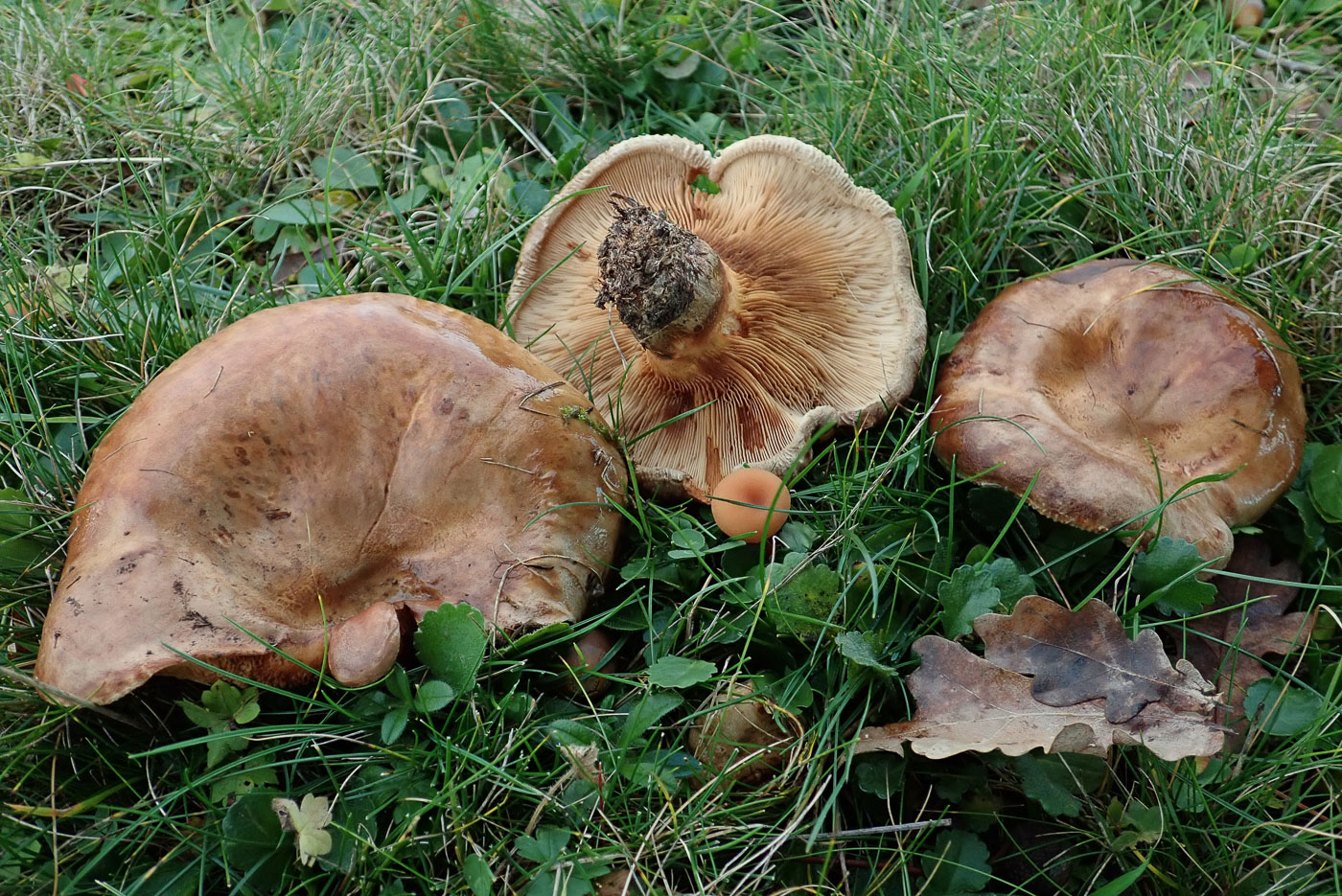
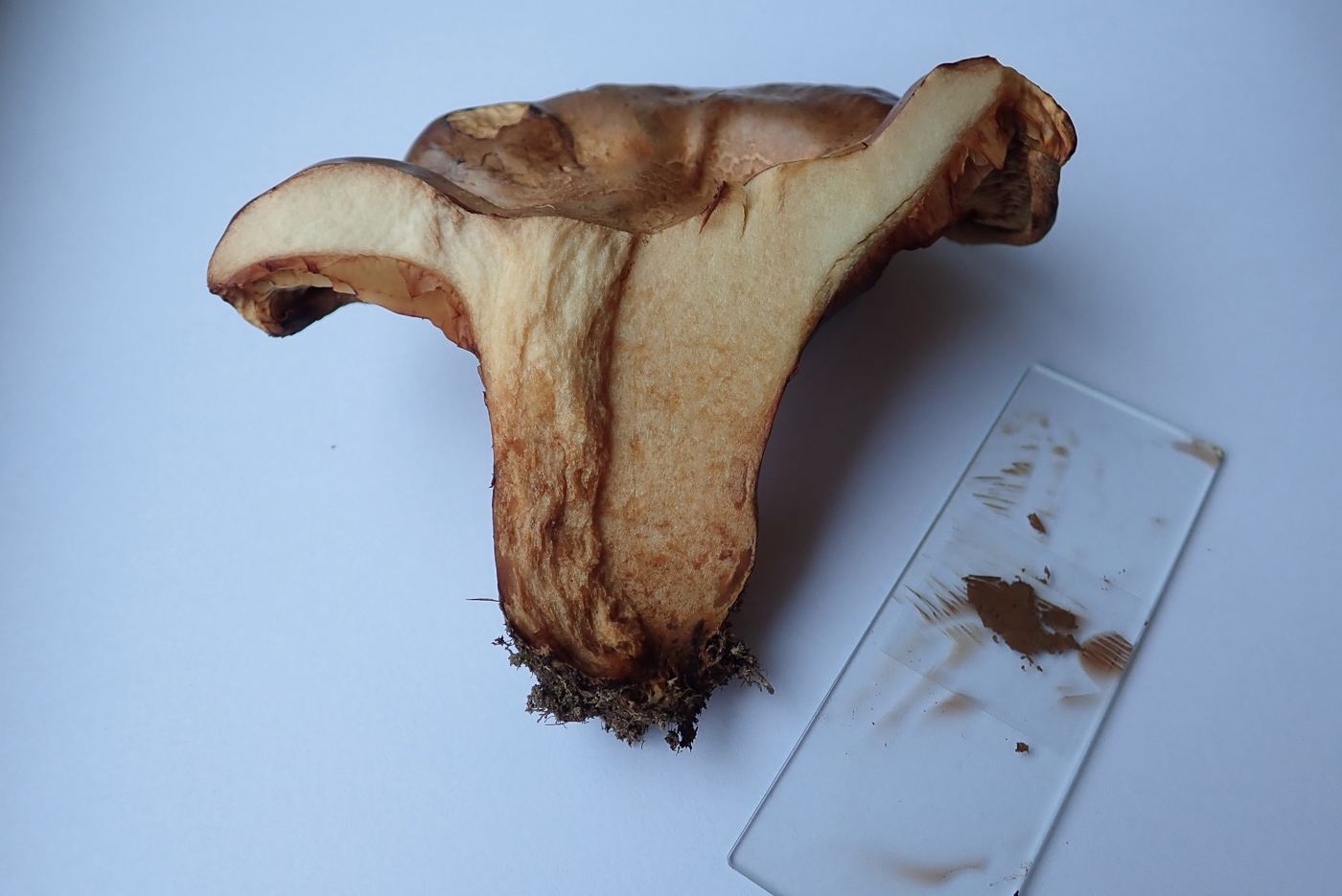 |
October 31st Paxillus obscurisporus (a Rollrim with no common name)
Under an isolated Oak in a large area of grassland at Ibstone Common Penny C. found these three large Rollrims which she suspected might not be the common P. involutus (see photo dated Sept 15). A sporeprint taken overnight, then scraped together and covered with a coverslip to give the true colour, proved too dark for P. involutus and following Kibby vol 1 this matched well with the probably common but rarely recorded P. obscurisporus. Note the tiny orange cap of the Deceiver beside the upturned specimen which gives a sense of scale! Caps were 12 cms across and the stem was very short and 3 cms across and when cut the flesh stained rusty brown. (See photo 2 for sporeprint, stem shape and flesh.) So another new species for the county.
|
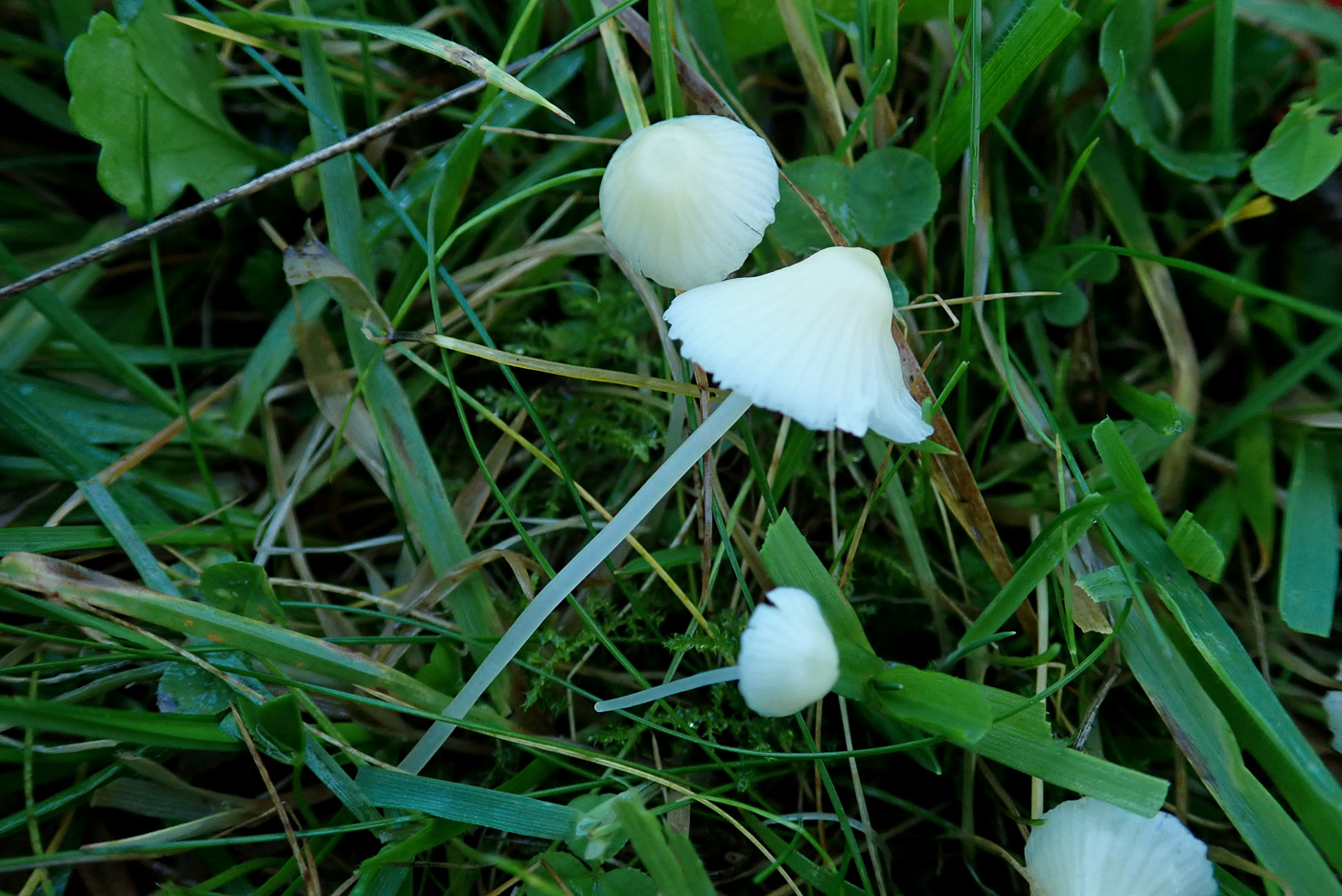
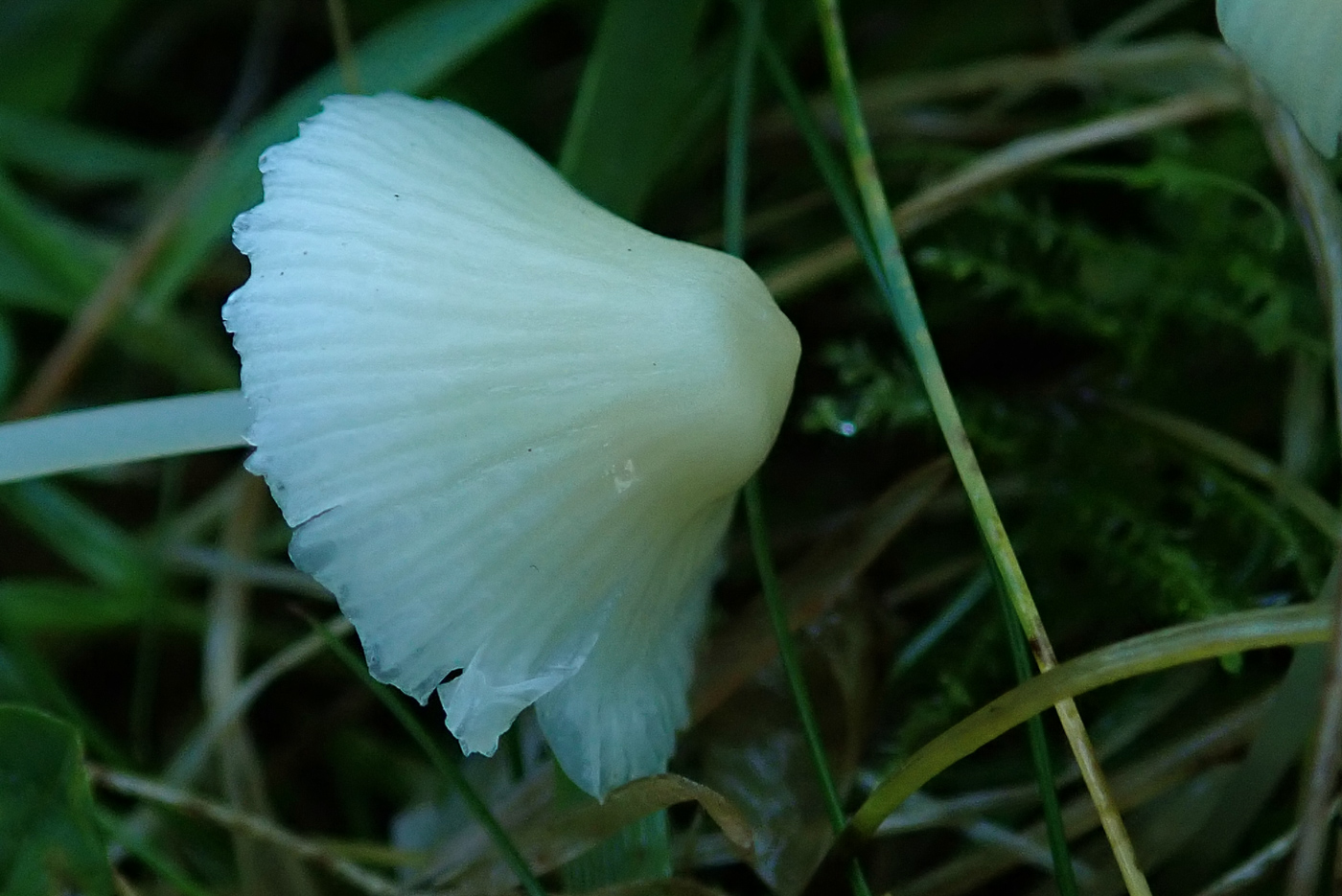
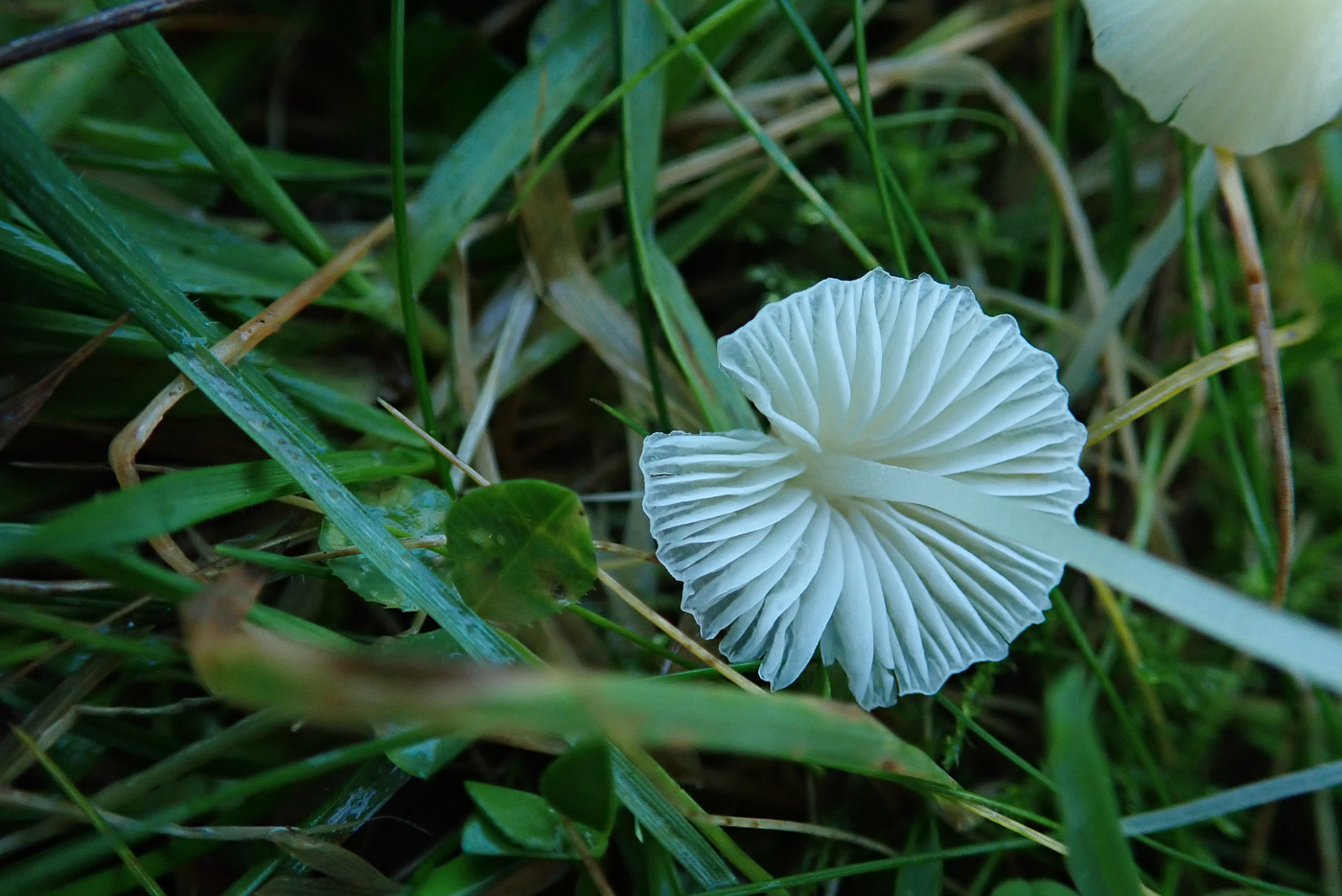 |
October 31st Mycena flavoalba ((Ivory Bonnet)
Penny C. has been focusing on grassland recently for two reasons: they aren't so thickly covered with fallen leaves so it's easier to find fungi, also late season is the best time for many of the grassland species. Today in Ibstone Common she found this cpmmon delicate white grassland Bonnet - an easy one to identify because the cap is tinged with yellow when mature unlike other white Bonnets, also this is the only white species likely to be found in this particular habitat. There are many others but all occur in woodland litter or on wood. Caps can get to about 1 cm across, and at this stage often have a small dimple in the centre, just visible in photo 2.
|
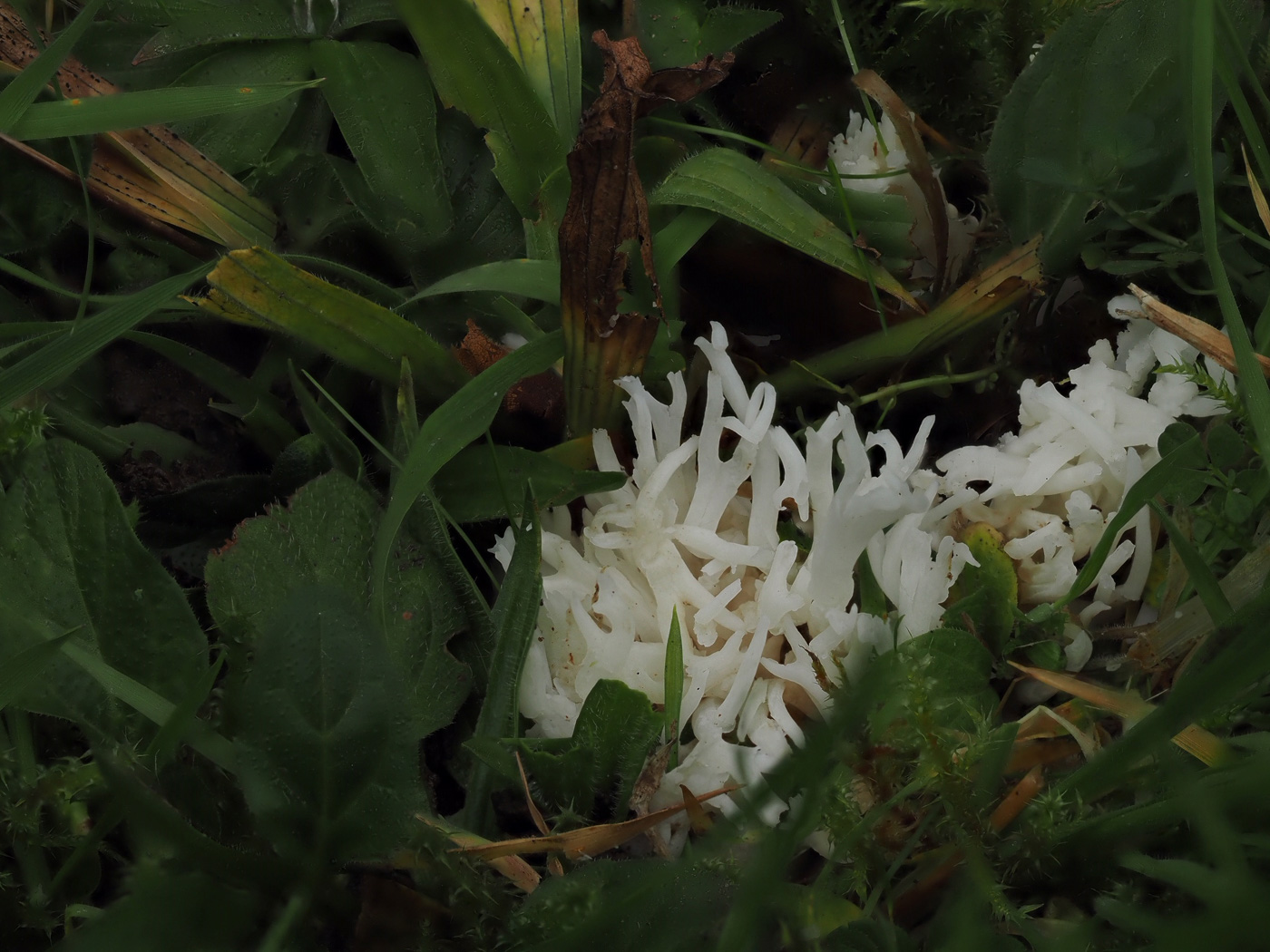 |
October 31st Ramariopsis subtilis (a Coral with no common name) 
Claire Williams found several clusters of this delicate white Coral in grassy vegetation in Prestwood Churchyard. On discovering that it was impossible to name without proper examination she delivered a sample to Penny C. the next day. Worth doing because the tiny warty spores proved to be those of this possibly not rare but certainly rarely recorded grassland species. The branching fragile 'antlers' are only up to 4 cm high and it is somewhat similar to Clavulinopsis rufipes (see photo dated Oct 25), also rare, but that species not only is rusty brown at the base but has smooth spores, not warty as here, hence the reason it's in a different genus. We have only a couple of previous county records of R. subtilis so this was a nice find.
|
October 30th 2020
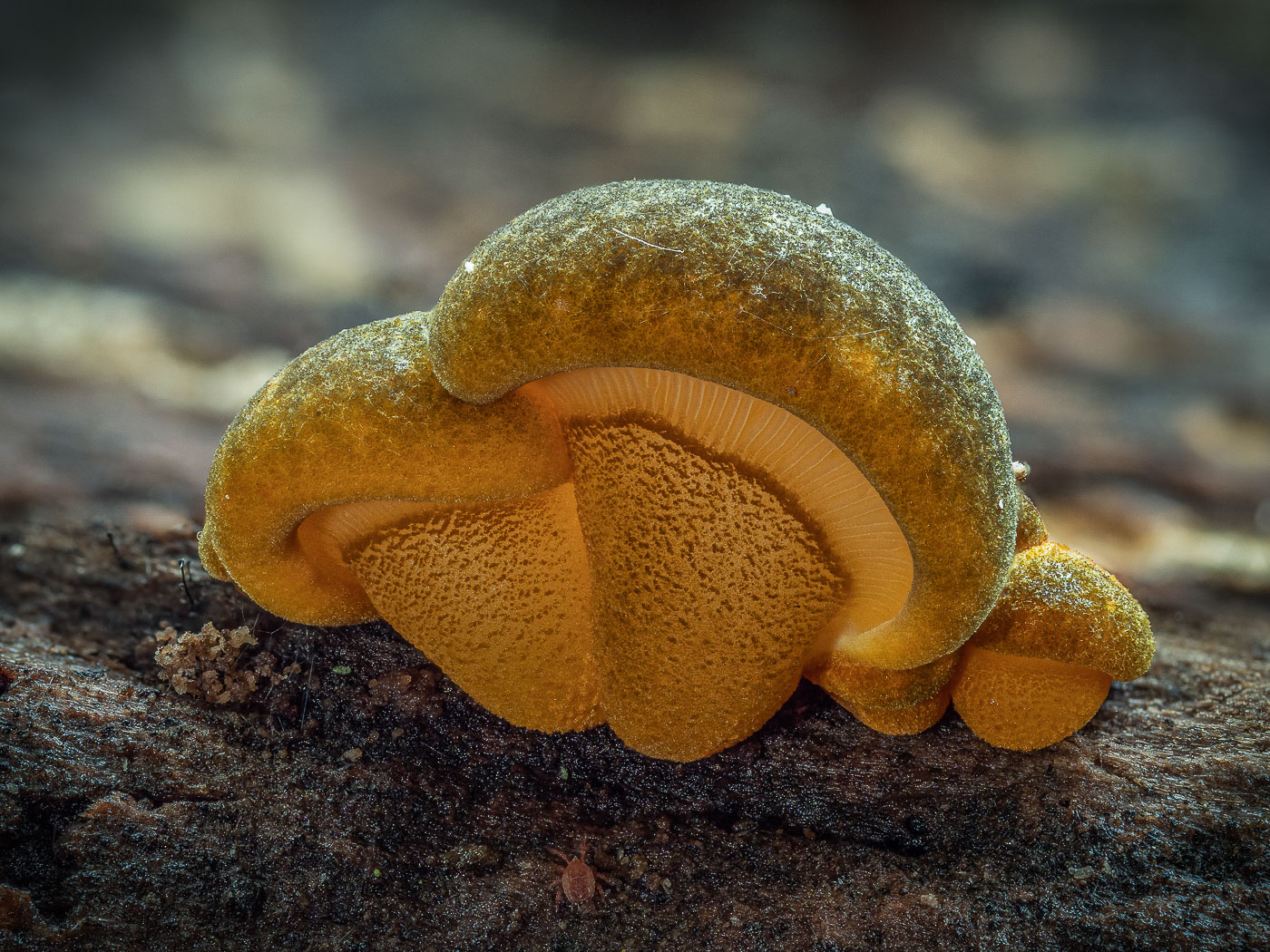 |
October 30th Panellus serotinus (= Sarcomyxa serotina) (Olive Oysterling)
Barry Webb noticed this occasional and beautiful species just developing on fallen Beech in Burnham Beeches. Its olive green to brownish colours are really unusual, making it an easy species to recognise if you know it! It is similar in shape and size to Oysters having a short eccentric stem and crowded decurrent gills and usually makes an appearance late in the season, even into the winter months, occurring on fallen trunks or large branches of deciduous tress, most commonly on Beech.
|
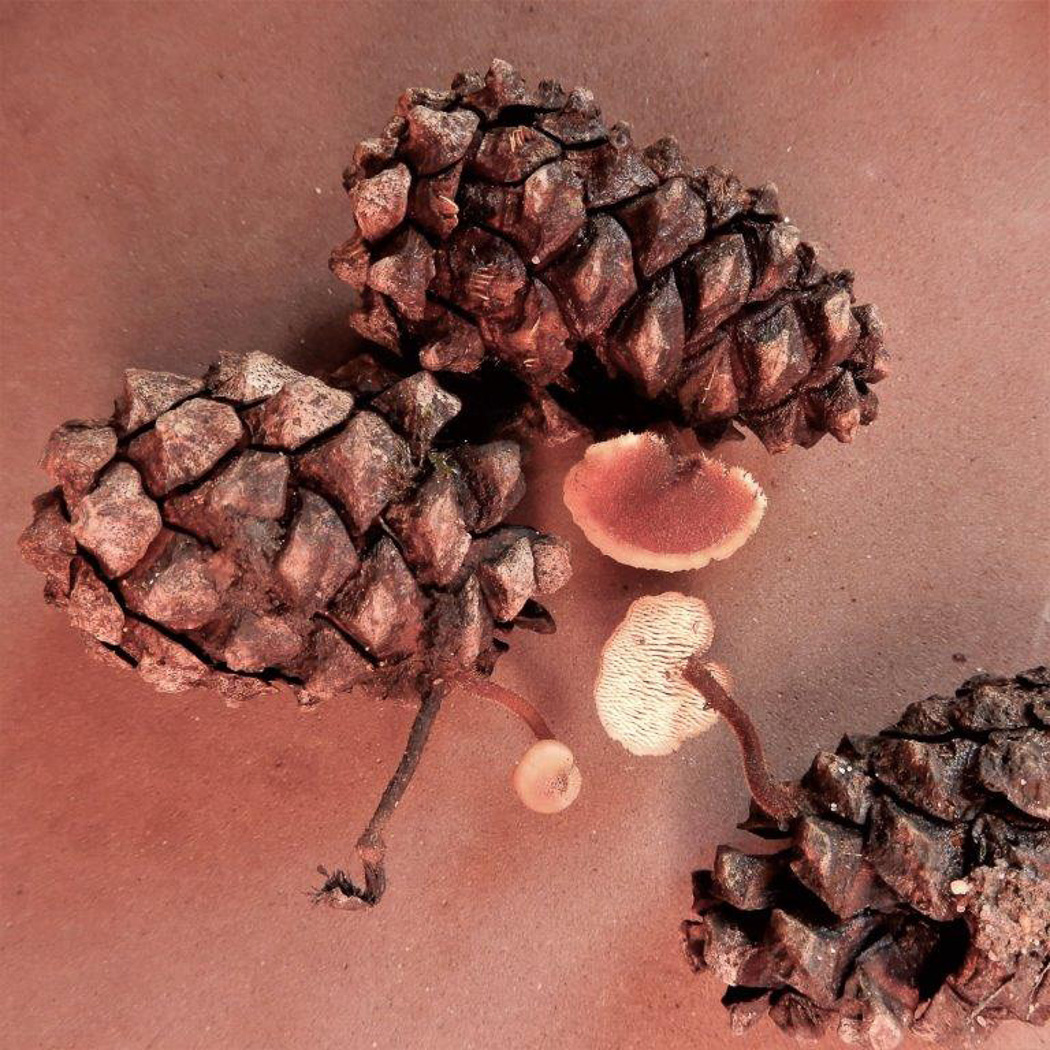
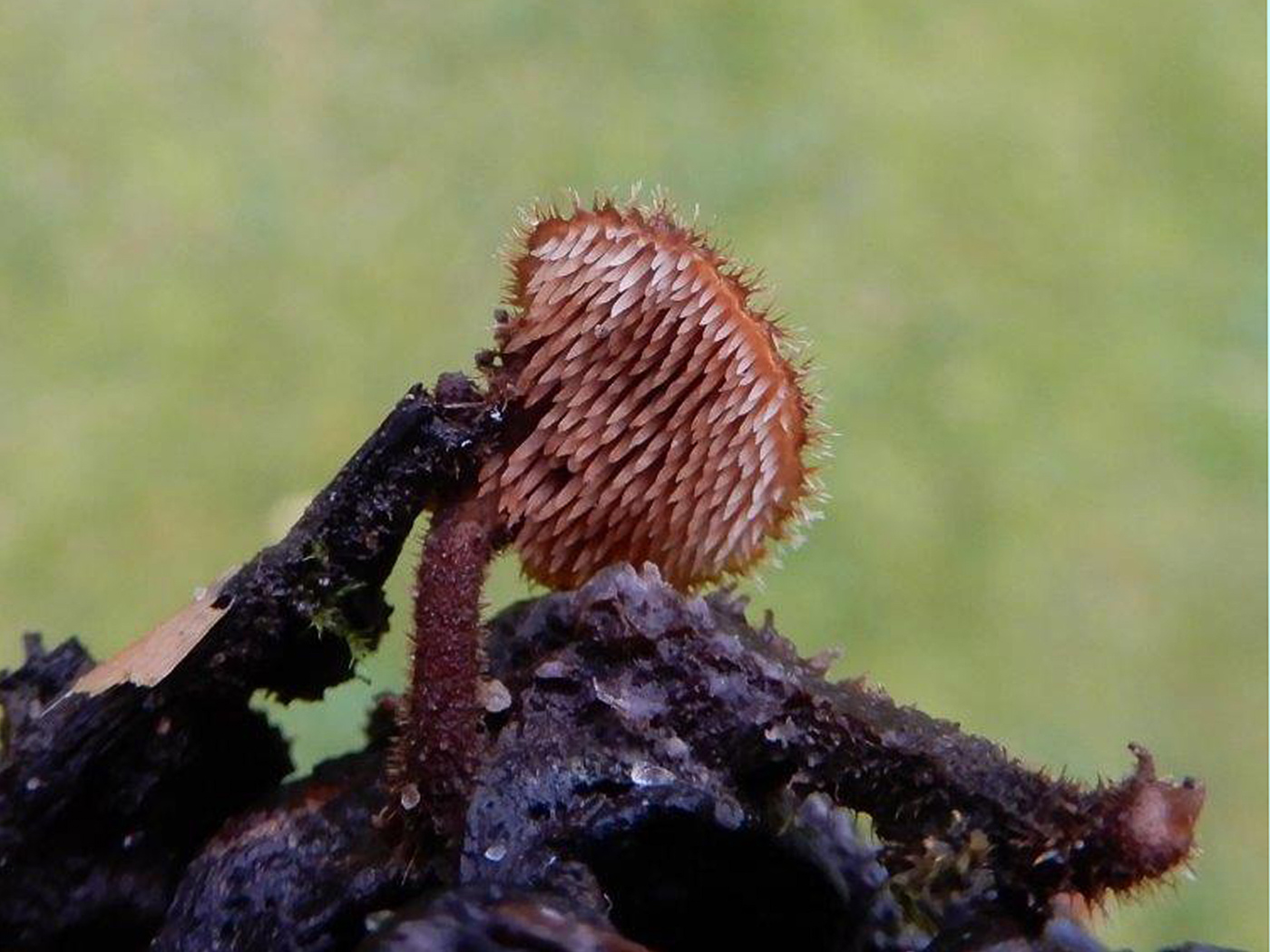 |
October 30th Auriscalpium vulgare (Earpick Fungus)
Margaret Bolton found this exquisite little species growing in rotting pinecones in her garden in Lane End. It's one Penny C. had been on the look out for when under Pine because it only grows on old pinecones though is by no means the only small mushroom to do so. Caps are only about 1 cm across and from above it looks like yet another LBJ, but examining the underside one is left in no doubt what it might be because of its sharp little spines / teeth in place of gills. By far the smallest toothed fungus, it is always a delight to find.
|
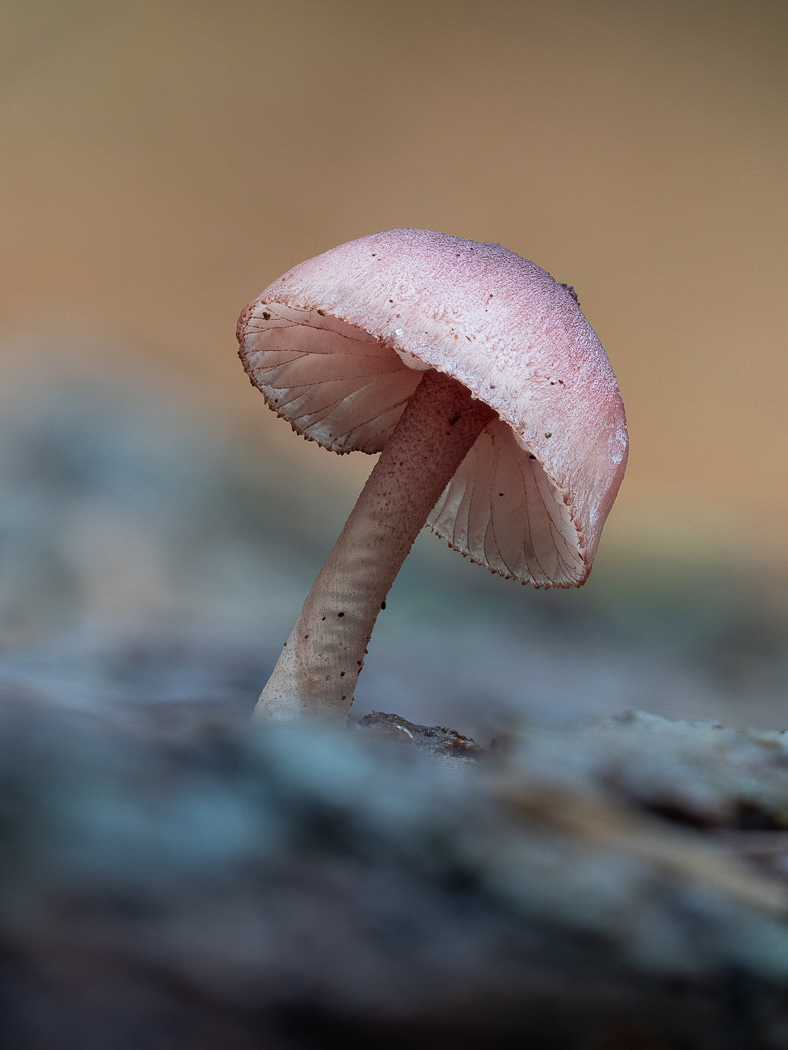 |
October 30th Mycena rubromarginata (Red Edge Bonnet)
Gill Ferguson found this singleton of a rare Bonnet on a stump in Burnham Beeches. Penny C. is sticking her neck out here over the identification and would have been much happier if the microscopic characters had been examined to confirm - Bonnets should really be checked with a scope, especially rarities which are new to the county! However, it is difficult to see that it could be anything else: growing on wood, the cap is the correct colour and shape, gills clearly have a vinaceous red edge and the stem is also pruinose at the top with the same colour but below this silky smooth.
|
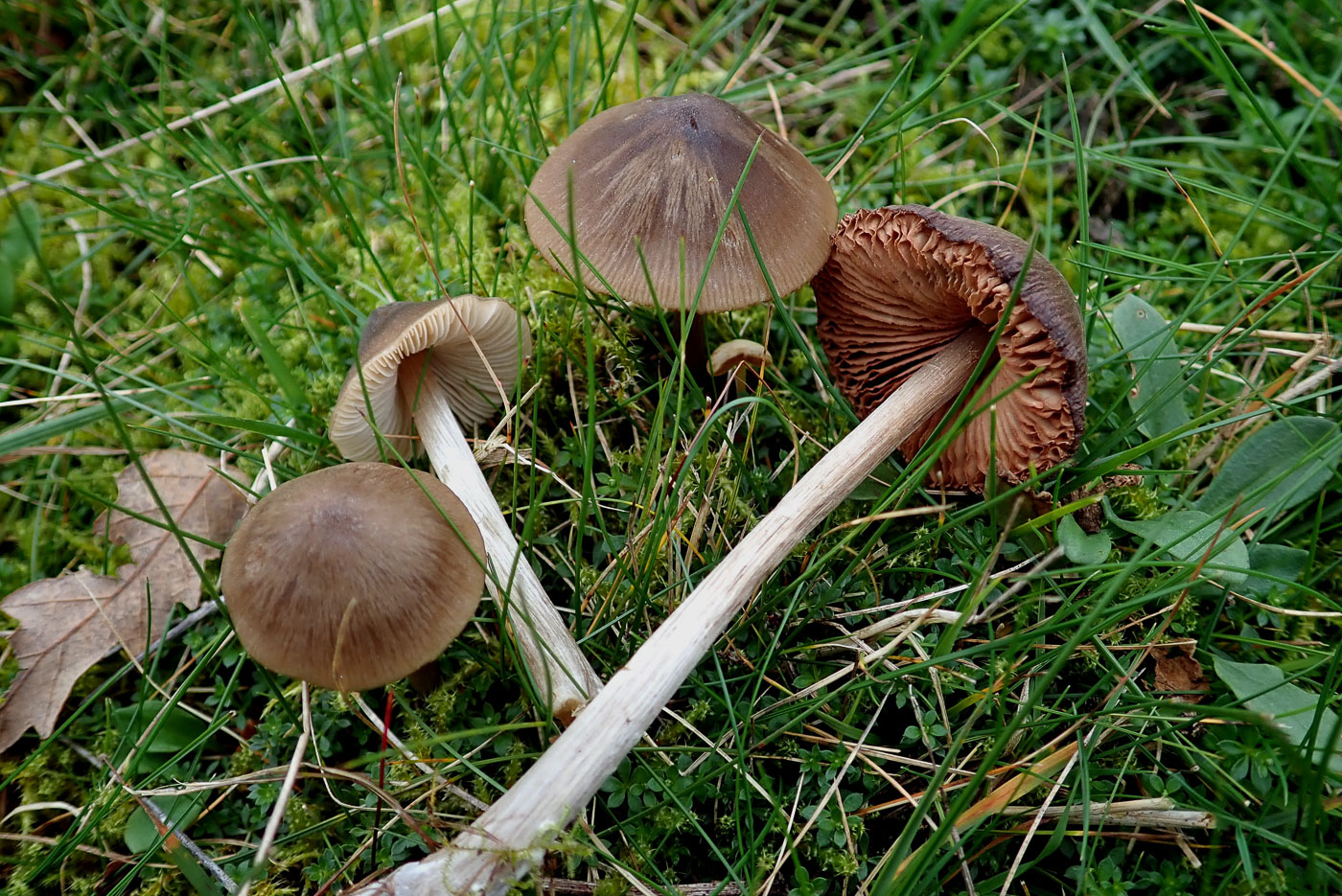 |
October 30th Entoloma conferendum (Star Pinkgill) 
Penny C. has collected several small brown Pinkgills recently and checked their spores in the hope of finding this common grassland species. Today at Coombe Hill she was rewarded. Entoloma is one of the hardest genera to work on, many species falling into the LBJ category and being extremely difficult to key out even when using a scope. Today's species has unique spores within the genus which are distinctly starlike, so with one quick look down the scope you have a name! Note also the much darker and clearly pink gills typical of the genus and visible in the older specimen compared to the younger one to the left which is still quite pale.
|
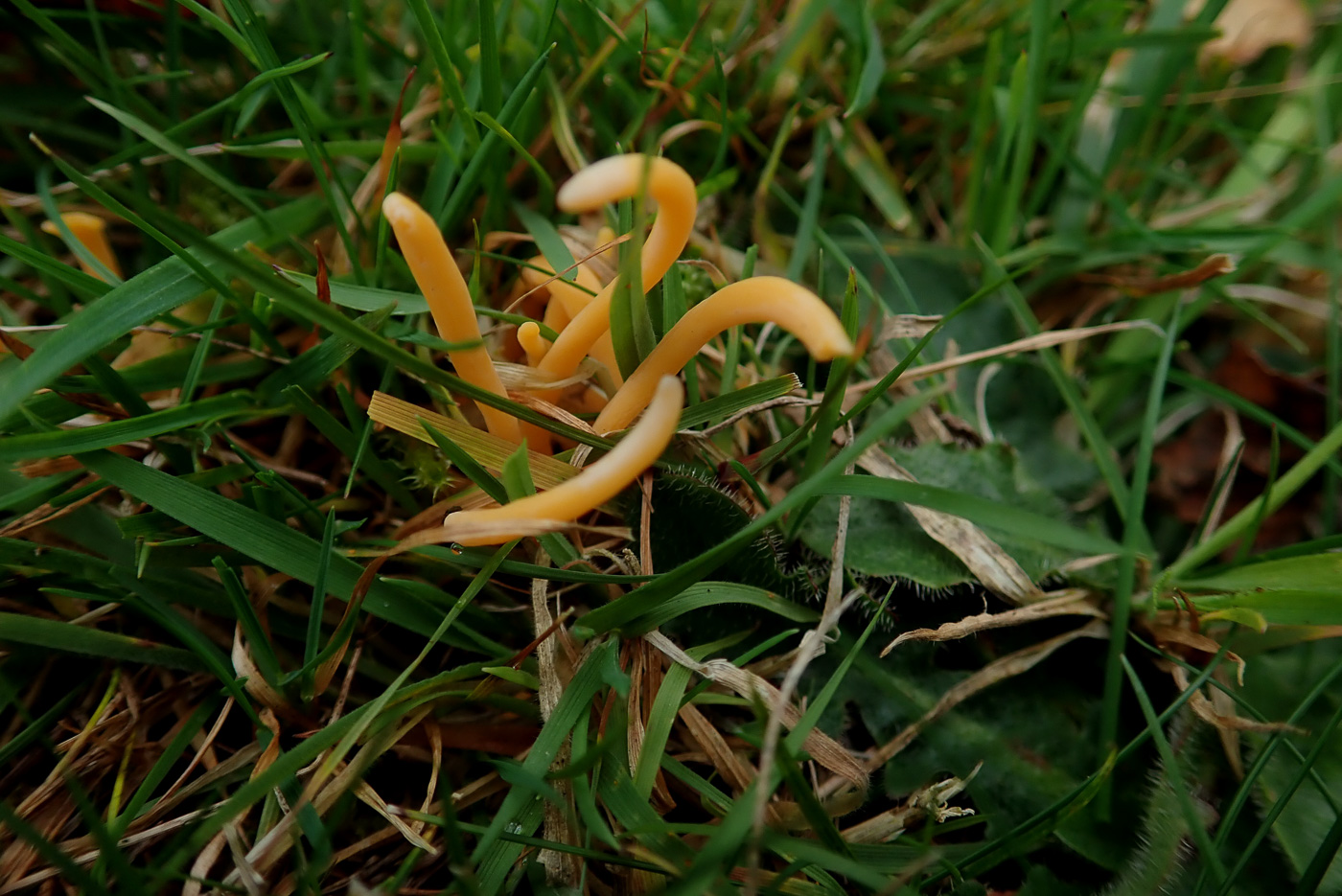 |
October 30th Clavulinopsis luteoalba (Apricot Club) 
At Coombe Hill today Penny found some small clubs which looked distinctly more orange in colour than those seen recently at other grassland sites. Would these at last prove to be a different species from the very common C. helvola? (see previous photos dated Oct 03 and 28.) The spores are key here and examining them is essential in splitting the species apart. Sure enough, they were smooth and pip-shaped (not round with bumps on as in C. helvola which can sometimes also be similarly orange) and matched correctly for C. luteoalba. Success!
|
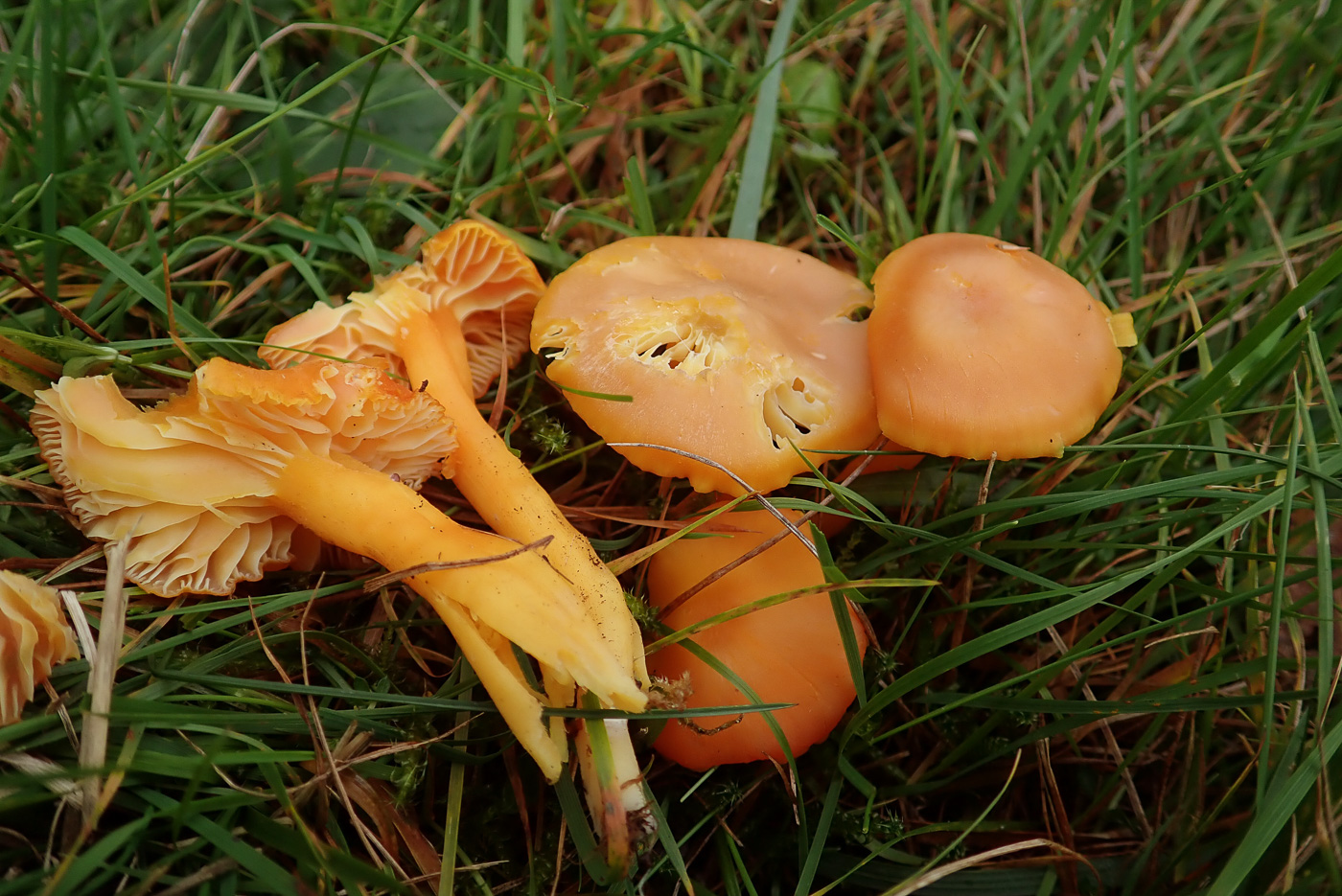 |
October 30th Hygrocybe reidii (Honey Waxcap) 
Penny found this collection amongst quite a few Waxcaps similar in appearance in mossy grassland at Coombe Hill. In contrast to H. miniata which was nearby, she noted the more orange colours and smooth shiny cap surface and when the gills were crushed she detected a smell of honey which is unique to this particular species of Waxcap. This smell is not always obvious: some specimens oblige, others from the same collection don't! But crush one really firmly and put it in a pot and, as is usually the case with fungal smells, it will increase after time to give you a better chance of picking it up. To be sure, one should always check the spore shape and size to confirm.
|
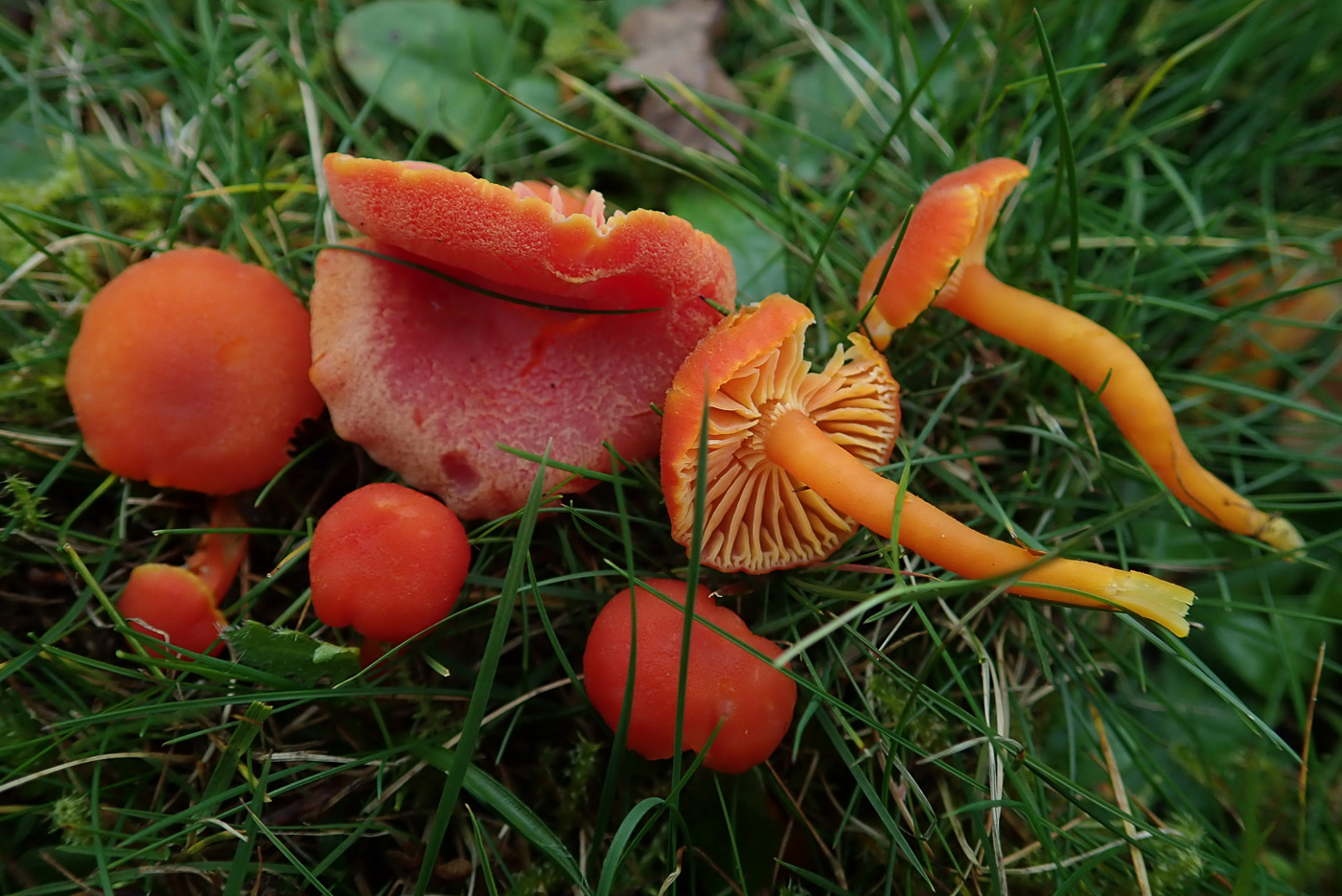
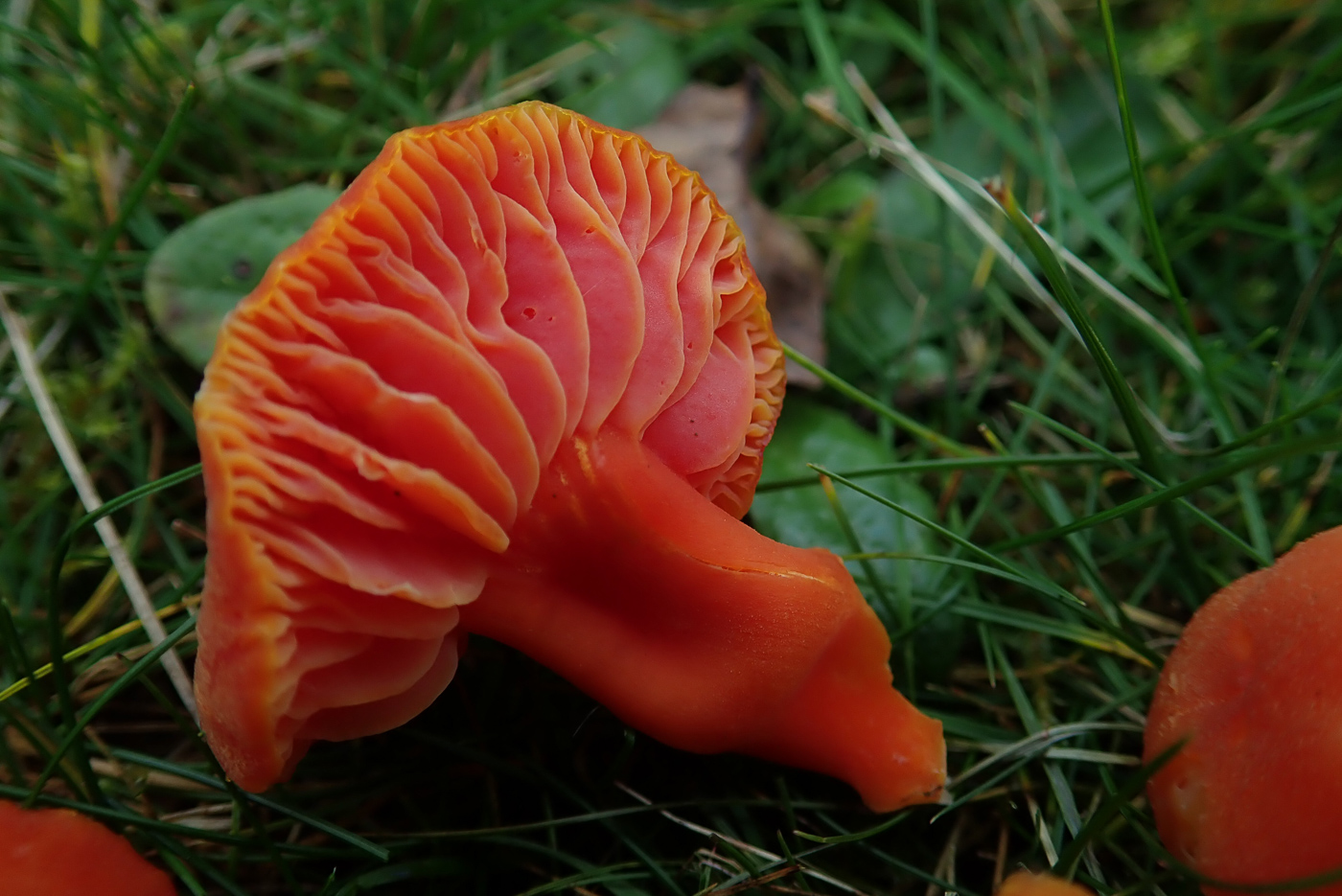
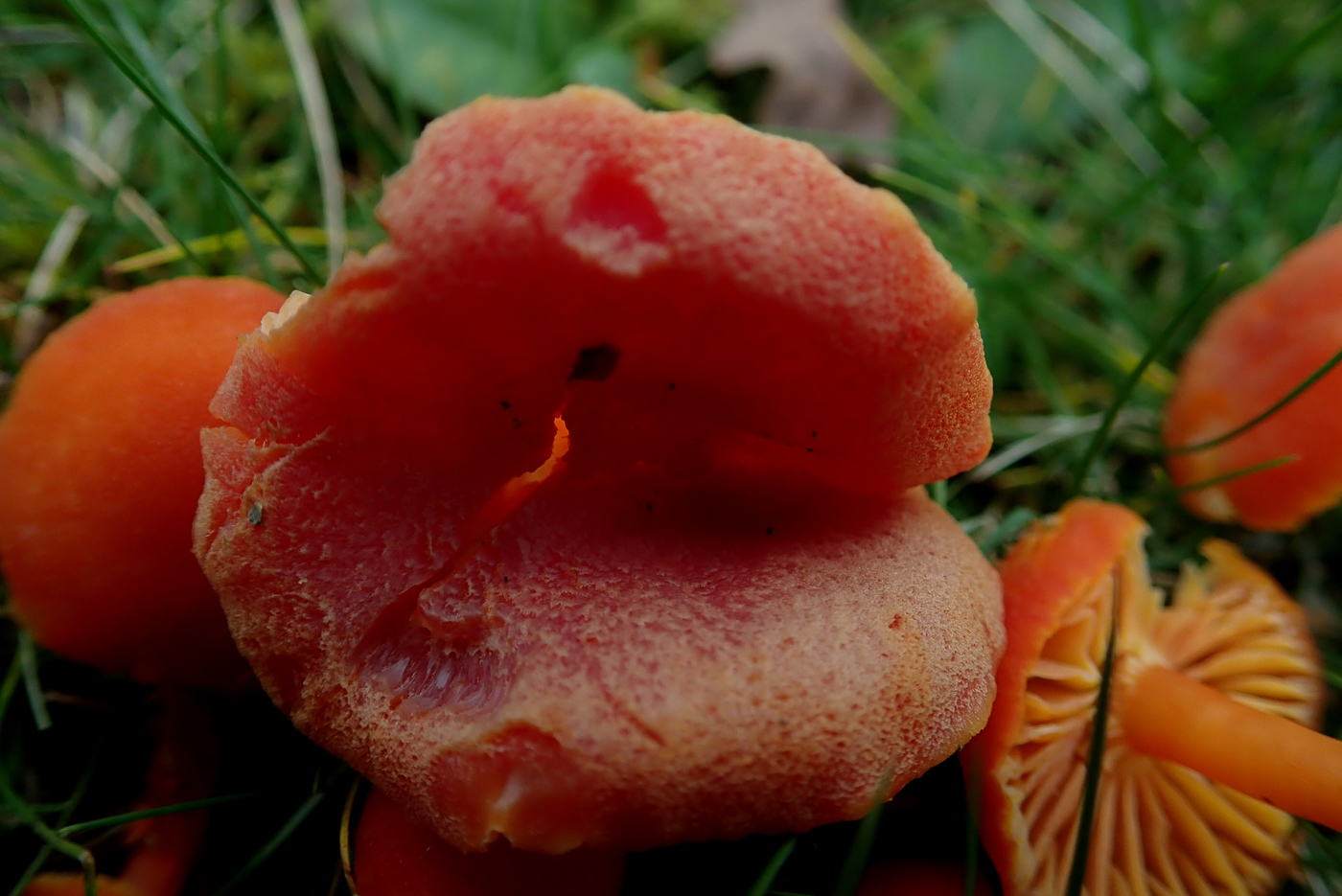 |
October 30th Hygrocybe miniata (Vermillion Waxcap) 
Penny C. was pleased to find some bright red Waxcaps today in the mossy grassland at Coombe Hill. As is often the way with quite a few different red caps around, some only just emerging, others more mature: were they all the same species and if so which?! Cap surface and smell can be useful pointers and this collection had no smell, even when the gills were crushed, also the surface was not smooth and shiny but finely velutinous to furry (seen with a hand lens and more noticeable after collection as it dried). This feature together with the lack of smell and spore shape was enough to distinguish the species from other likely candidates.
|
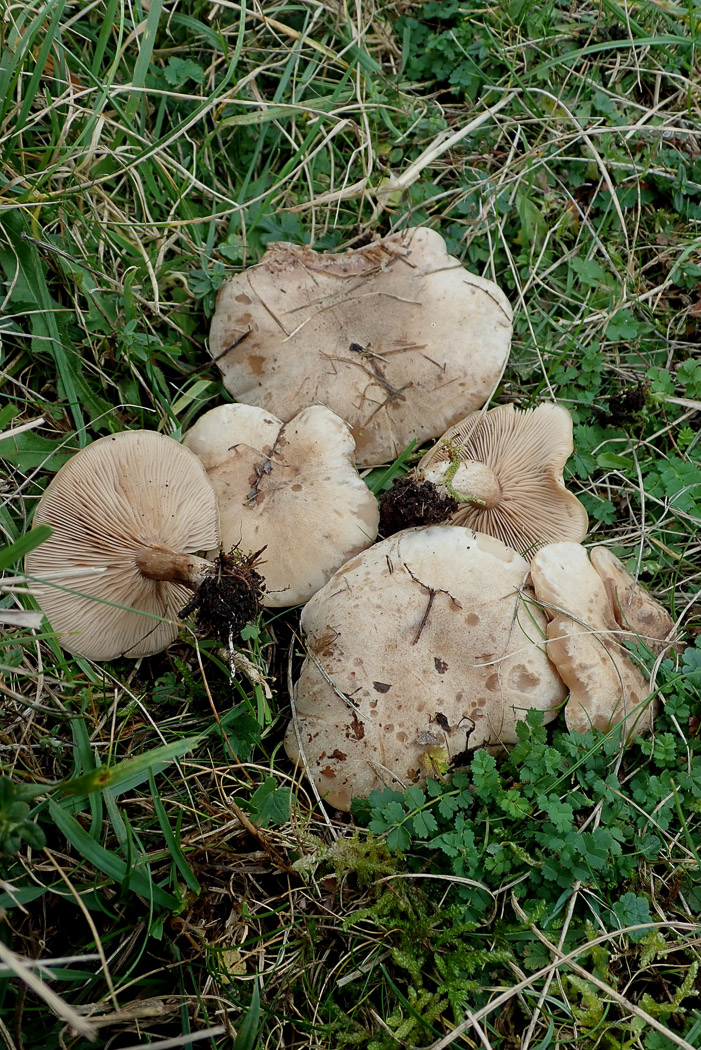
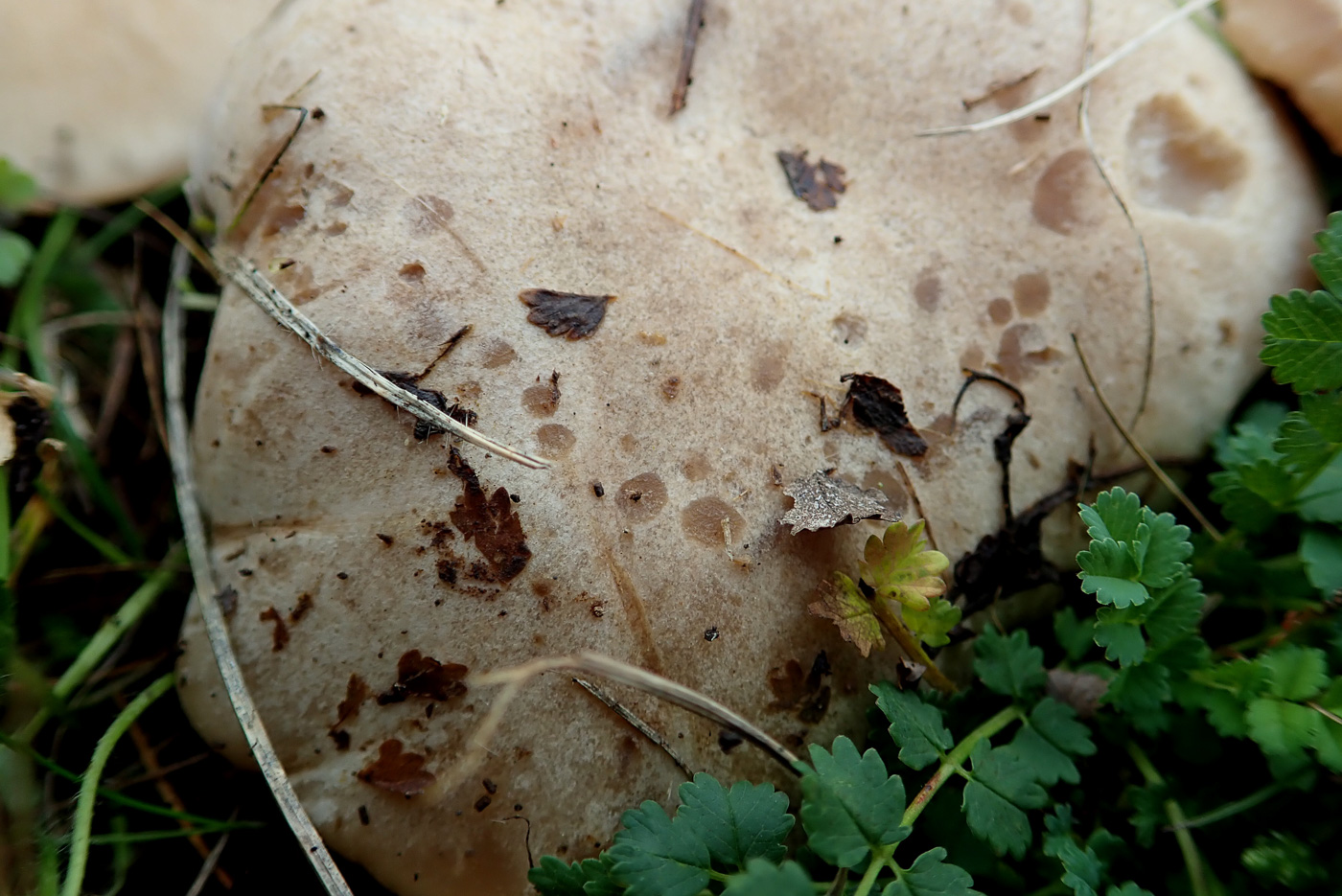 |
October 30th Lepista luscina (a Blewit with no common name)
Penny C. came across several large clumps, even rings of this quite unusual Blewit on the escarpment at Coombe Hill. Superficially similar to Clitocybe nebularis (which was also fruiting nearby) and maybe other dull beige mushrooms as well, the feature which distinguishes it is the typical droplet-like markings which develop on the mature cap (seen in Photo 2). The crowded gills are concolorous with the cap and it has the typical sweet smell of the genus which becomes more apparent once collected and starting to dry off a bit.
|
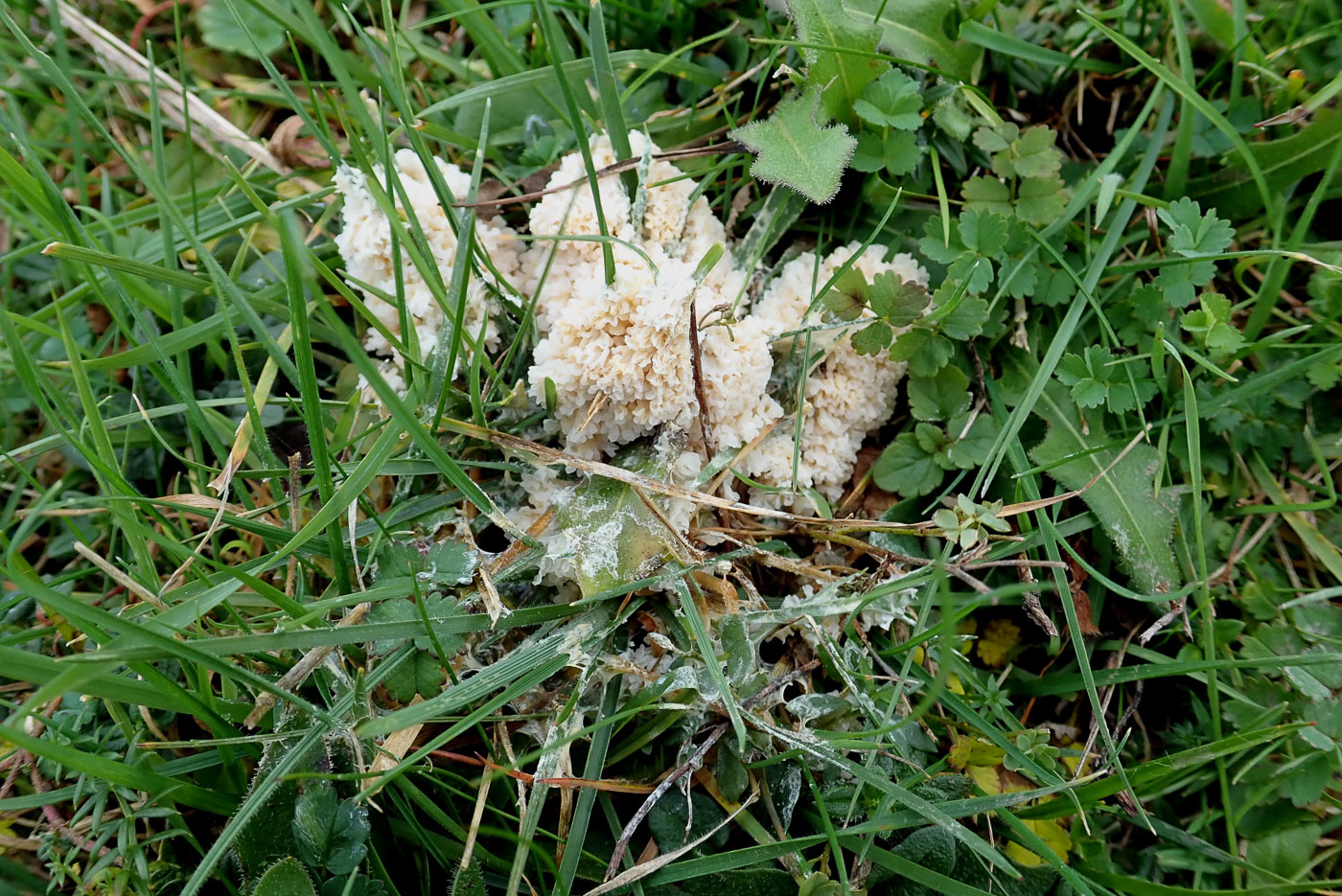
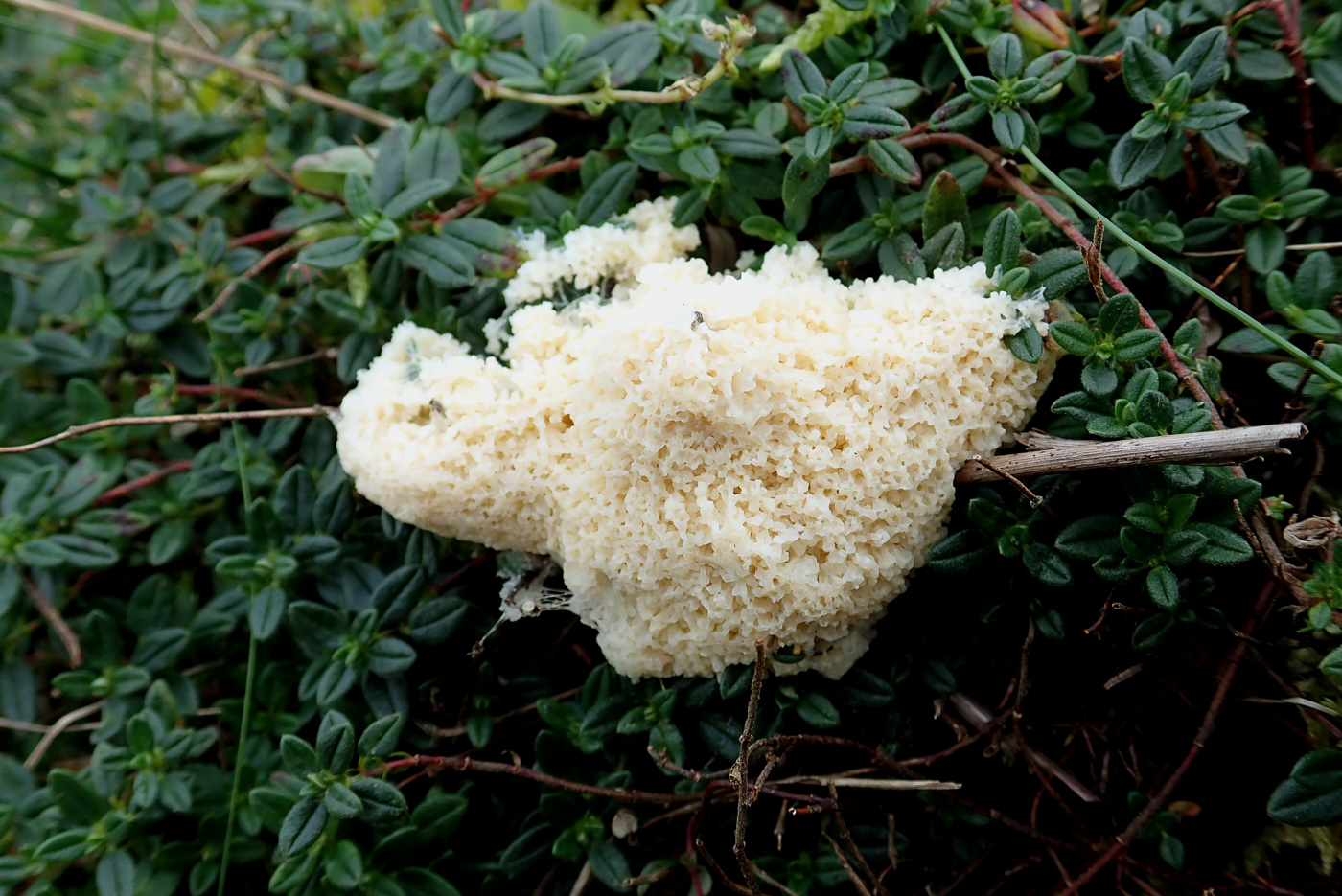 |
October 30th Mucilago crustacea (Dog Sick Slime Mould)
Penny C. found two small 'piles' of this aptly named Slime Mould growing through vegetation on the escarpment at Coombe Hill. Photo 1 shows it at the very slimy stage, only just settling down having left trails of white as it's moved through the vegetation. Photo 2 is starting to dry off and go crinkly and it will eventually become crumbly to crusty white as the spores develop and blow away.
|
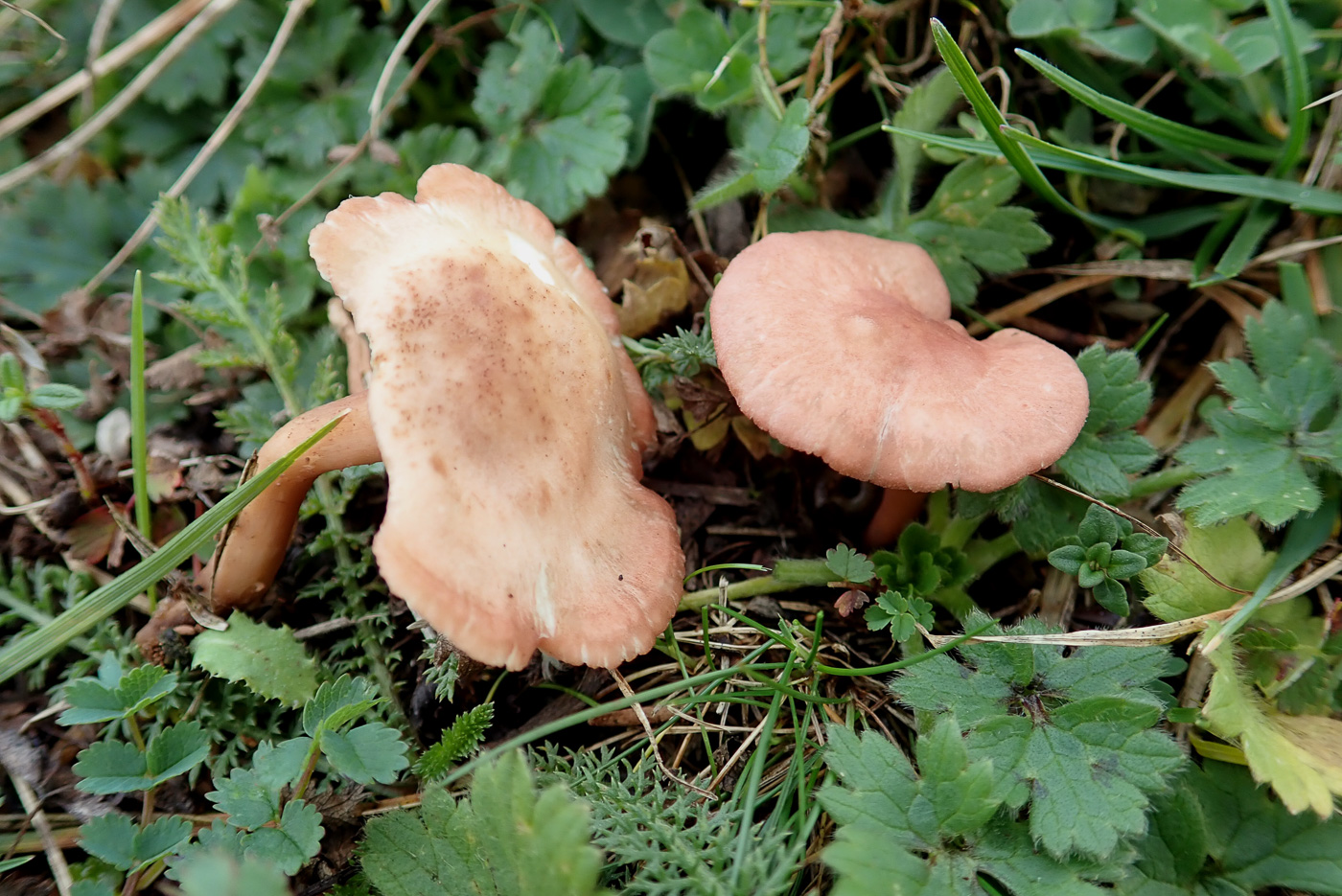
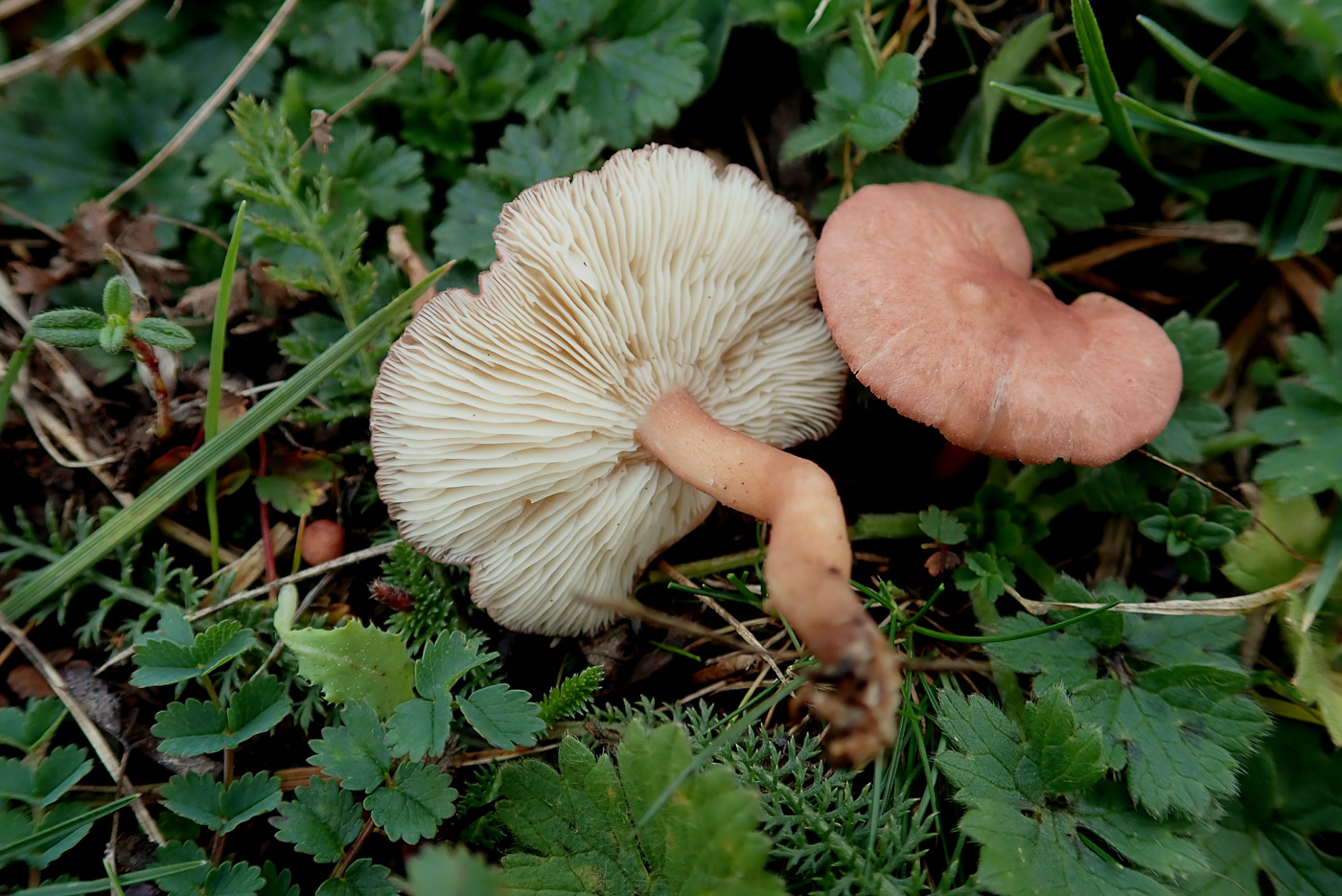 |
October 30th Calocybe carnea (Pink Domecap)
Penny C. found just two specimens of this quite common small grassland species at Coombe Hill on the escarpment. It tends to keep low in the grass and is easily overlooked but has a pretty pale pink cap (flesh-coloured as the Latin name suggests) and stem to match but turn it over and the white crowded gills show up well in contrast.
|
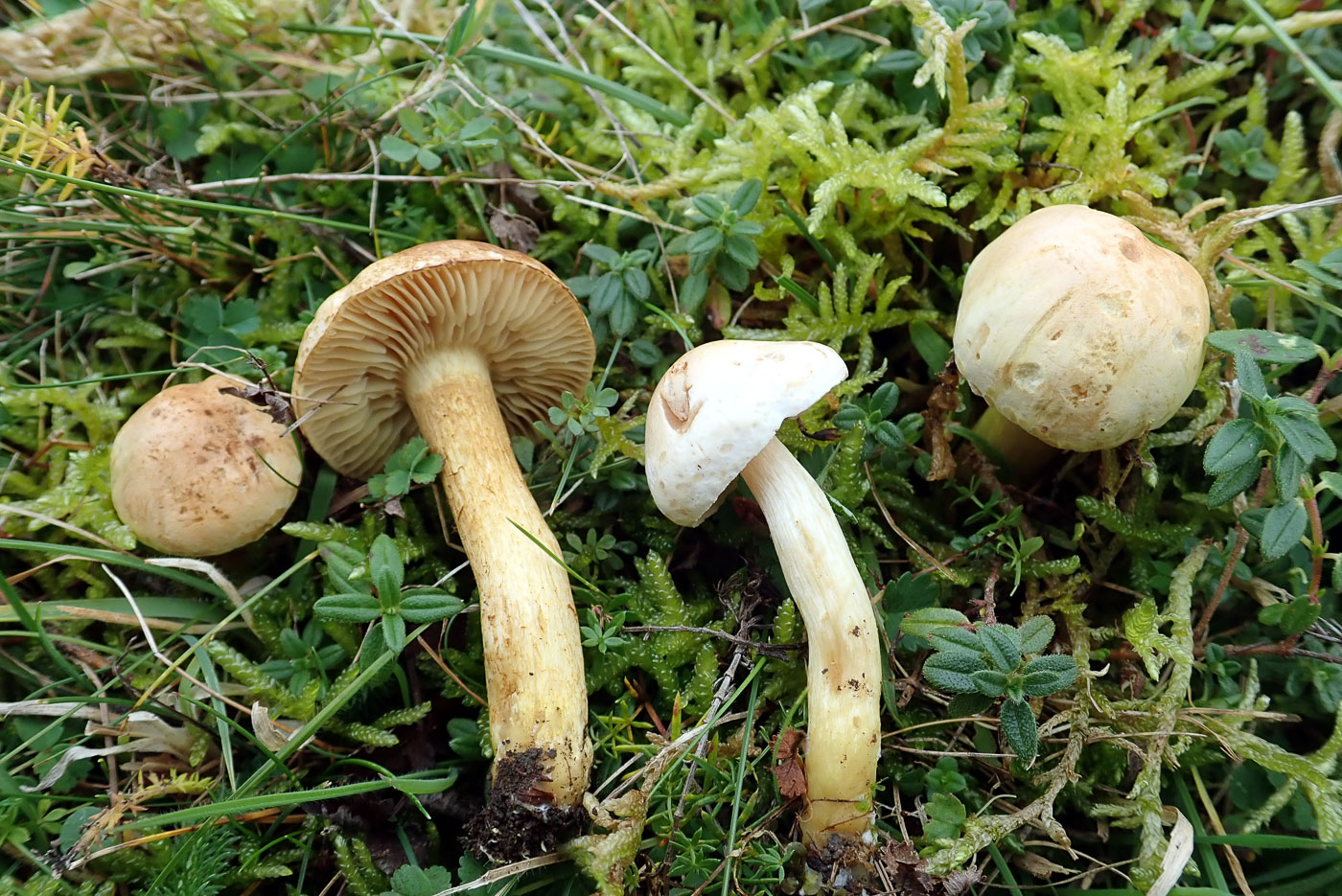
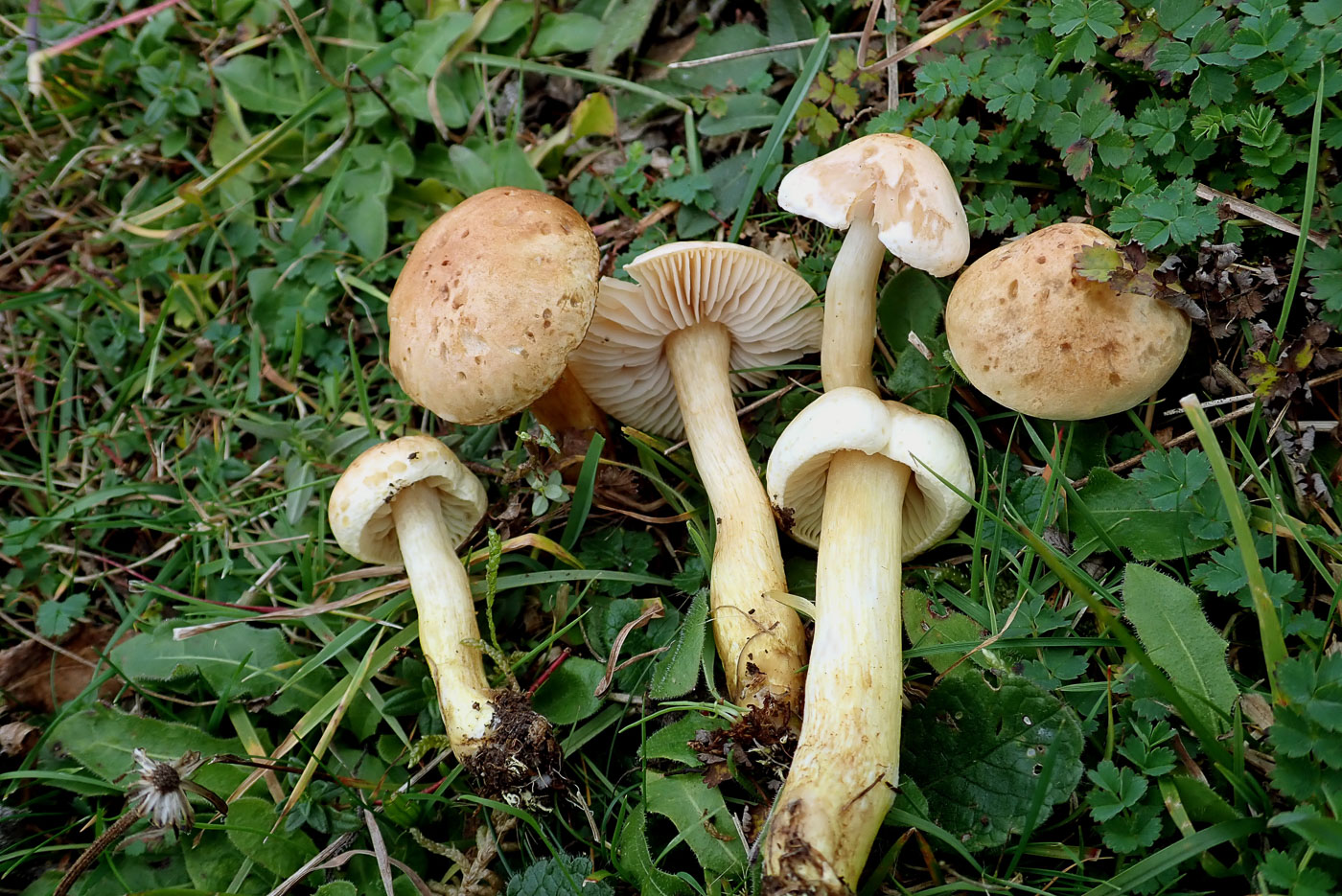 |
October 30th Tricholoma hemisulphureum (a Knight with no common name)
Penny C. visited the escarpment at Coombe Hill today hoping to find one or two of the specialised species which grow there in association with Helianthemum (Rock Rose). This Tricholoma is one of those, closely related to the common yellow T. sulphureum (see photo dated Oct 16) and with exactly the same smell of coal gas tar, but it lacks the distinctive yellow cap of that species, having a duller pale brown cap though with a hint of yellow. The gills are pale cream and the stem is concolorous but usually yellow at the base. It appears to be host specific with Helianthemum and seems to be quite common wherever that plant is found.
|
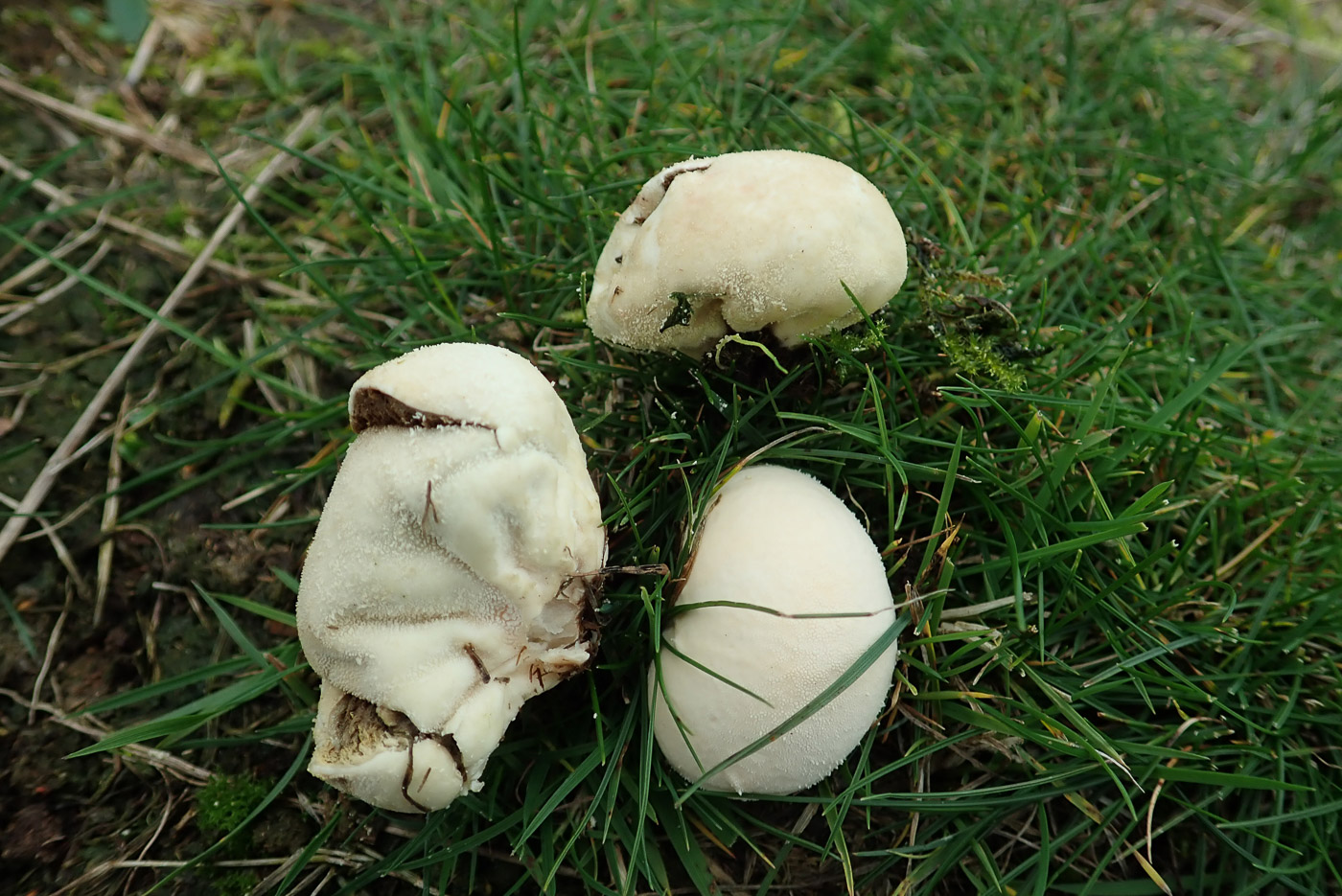
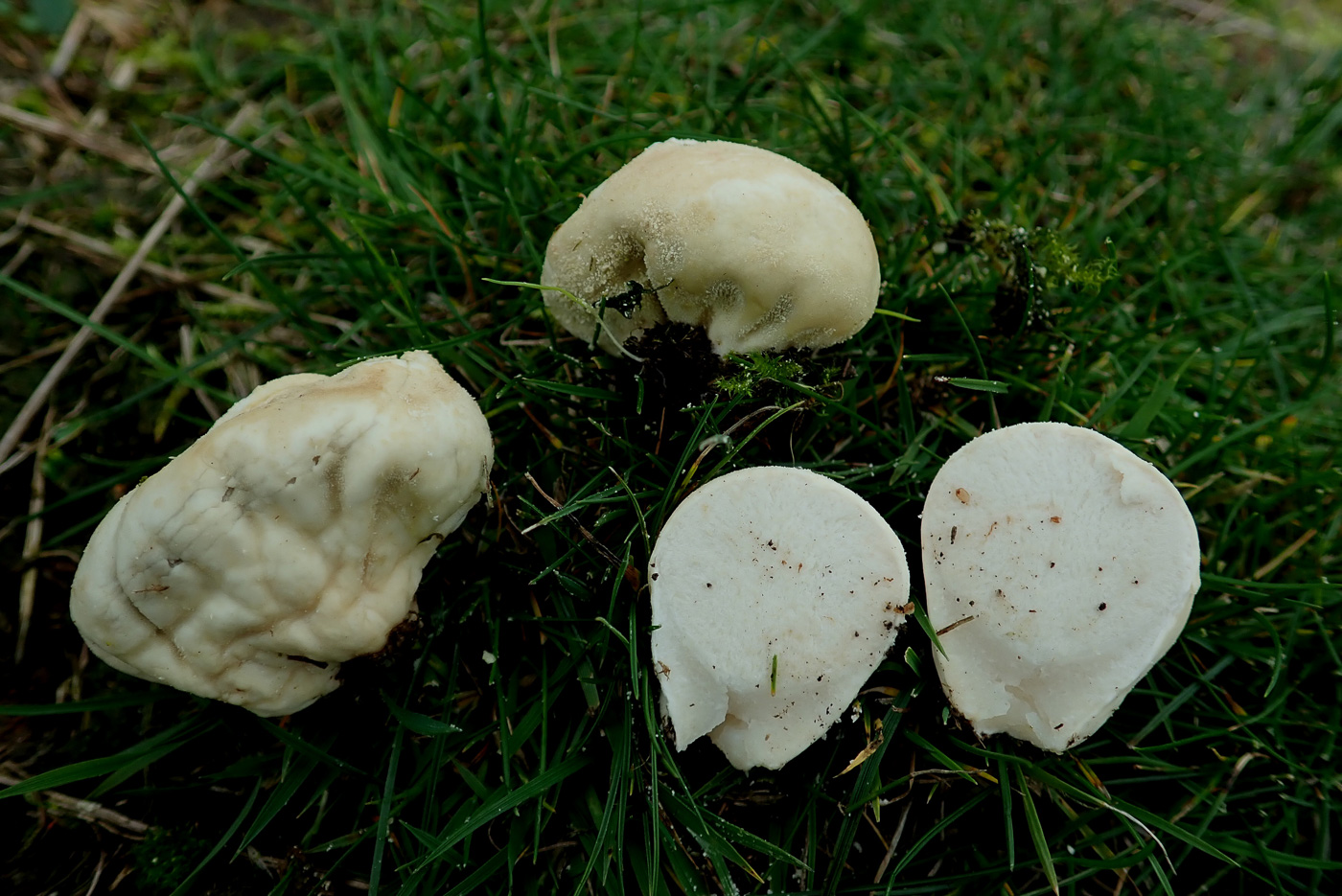 |
October 30th Lycoperdon pratense (Meadow Puffball)
Penny C. found a few of these in grass at Coombe Hill. In most handbooks as Vascellum pratense but fairly recently moved to the genus Lycoperdon with our more common woodland Puffballs, this is not found in woodland but in grassland but is fairly obviously a puffball from its shape and size but lacks a proper stem, instead tending to become pleated towards the base (seen in photo 1 in the LH specimen). The upper surface is slightly scurfy, somewhere between the smoothness of L. pyriforme and the distinct wartiness of L. perlatum.
|
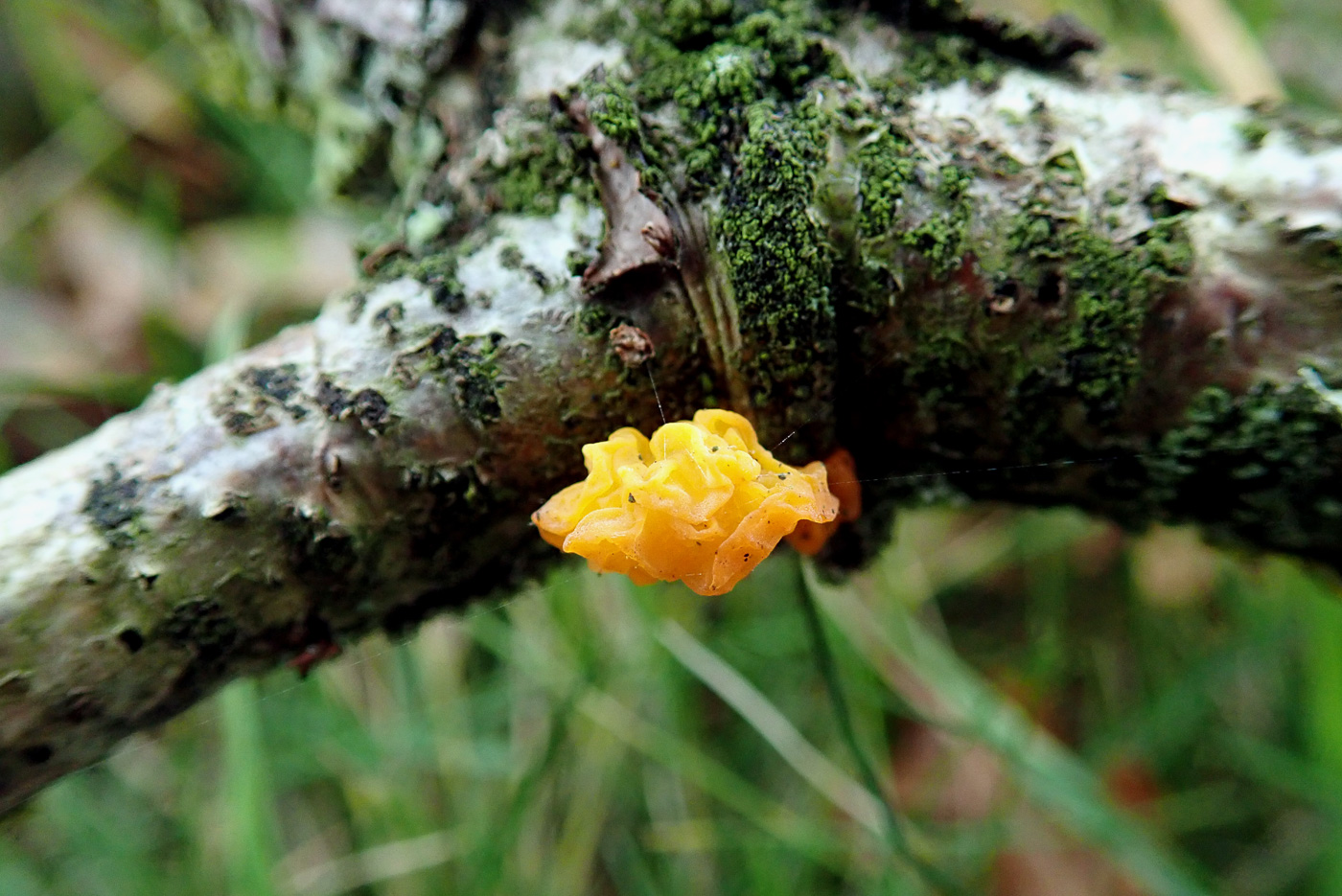
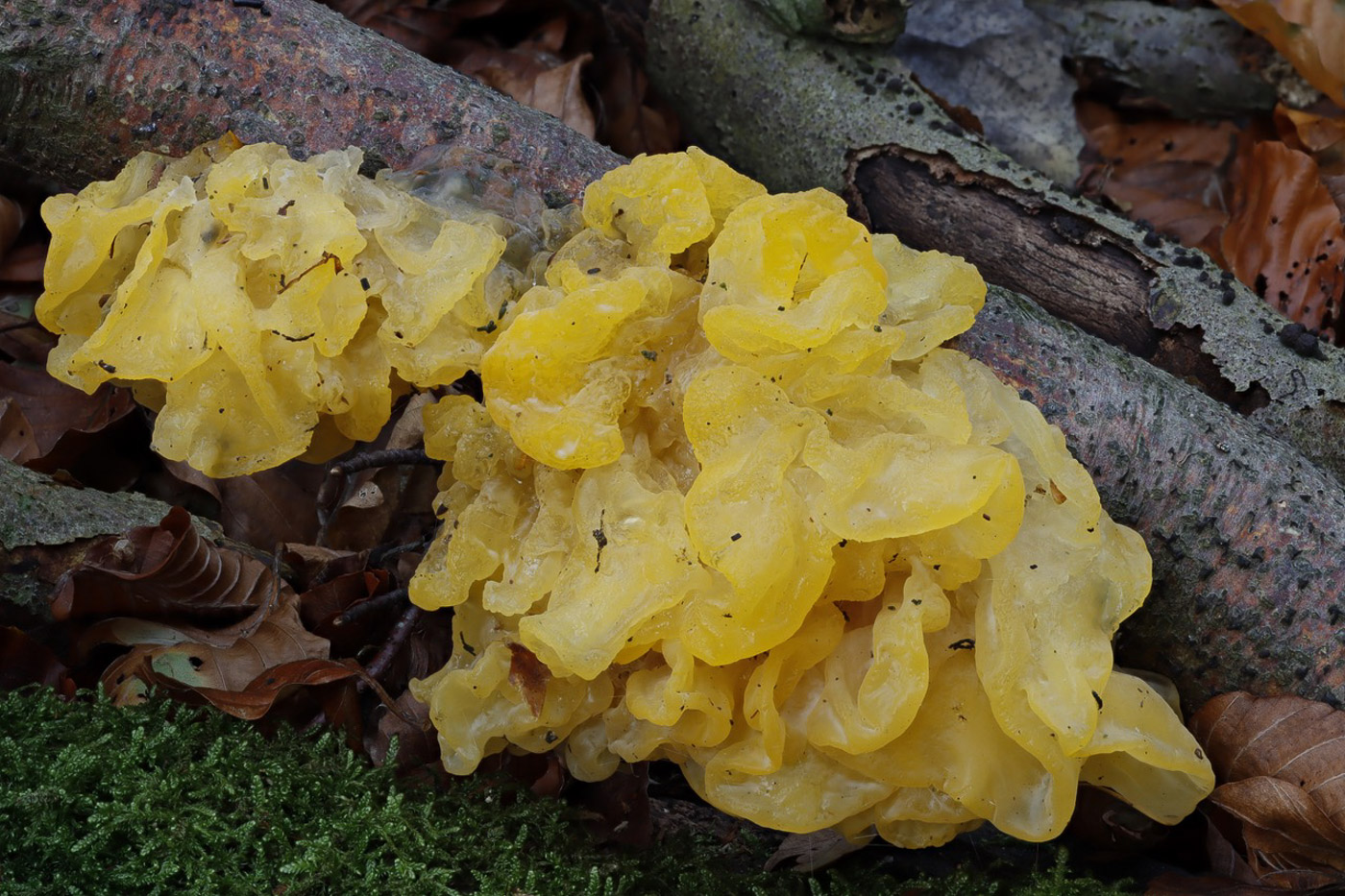 |
October 30th Tremella mesenterica (Yellow Brain)
This is another species making rather a late appearance, found today on a fallen Oak stick at Coombe Hill by Penny C. Sadly only a small specimen but big enough to show the striking yellow colour and typical lumpy gelatinous surface. So another species to look out for now, often found on Oak and also, perhaps surprisingly, on Gorse. Photo 2, however, is of a more mature collection found on fallen Beech in Bradenham Woods, taken by Paul Goby on November 9th.
|
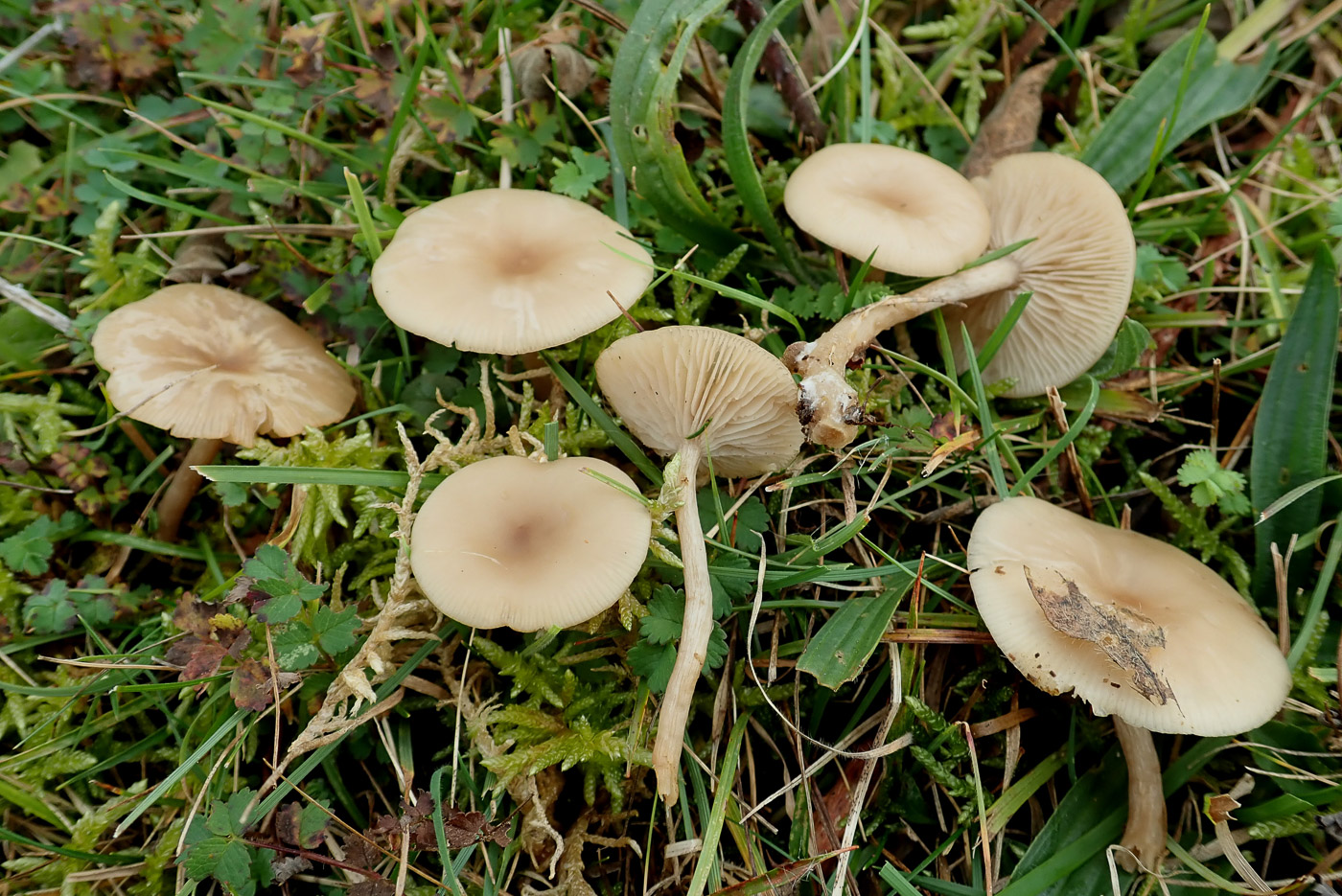
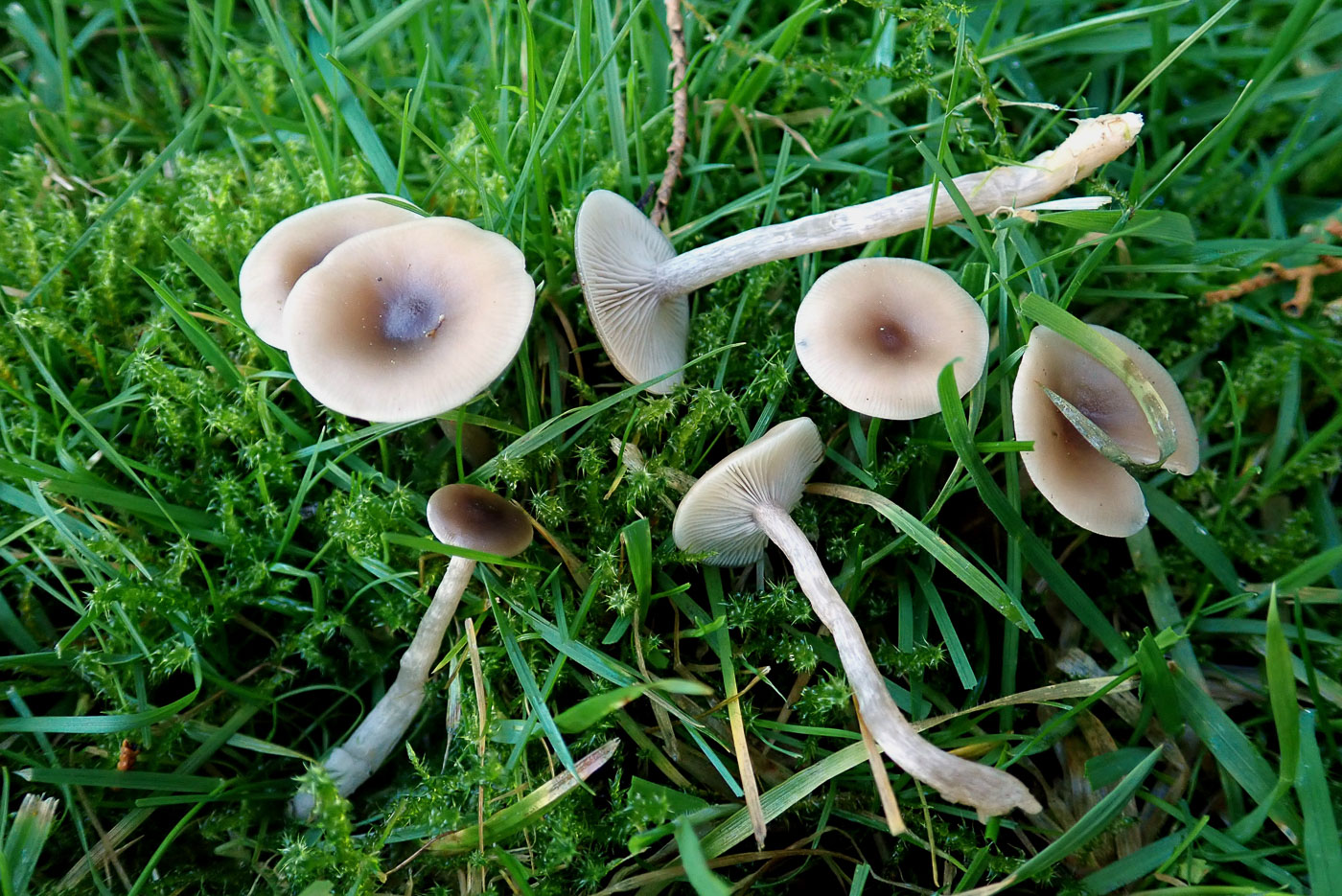 |
October 30th Clitocybe fragrans (Fragrant Funnel)
Penny C. has been on the lookout for this species and today found good numbers of it on the escarpment at Coombe Hill. It's a smallish Funnel and fairly nondescript, in fact very like several other Funnels (see C. phaeophthalma dated Oct 14 for one example), but like that species it can be distinguished from others by its smell. Not of wet feathers as in C. phaeophthalma but really sweet with a clear aniseed component, more like that of C. odora but of course not likely to be confused with that species which has a blue green cap. Now we know this species is about, it's worth picking up anything which looks similar and giving it a smell. Once experienced, never forgotten! Photo 2 taken 3 days later in Bradenham Churchyard shows a rather different collection with a dark central dot in the cap. Penny suspected this was a different species because there was no smell on collection, but a few hours later at home the smell had become unmistakable.
|
October 29th 2020
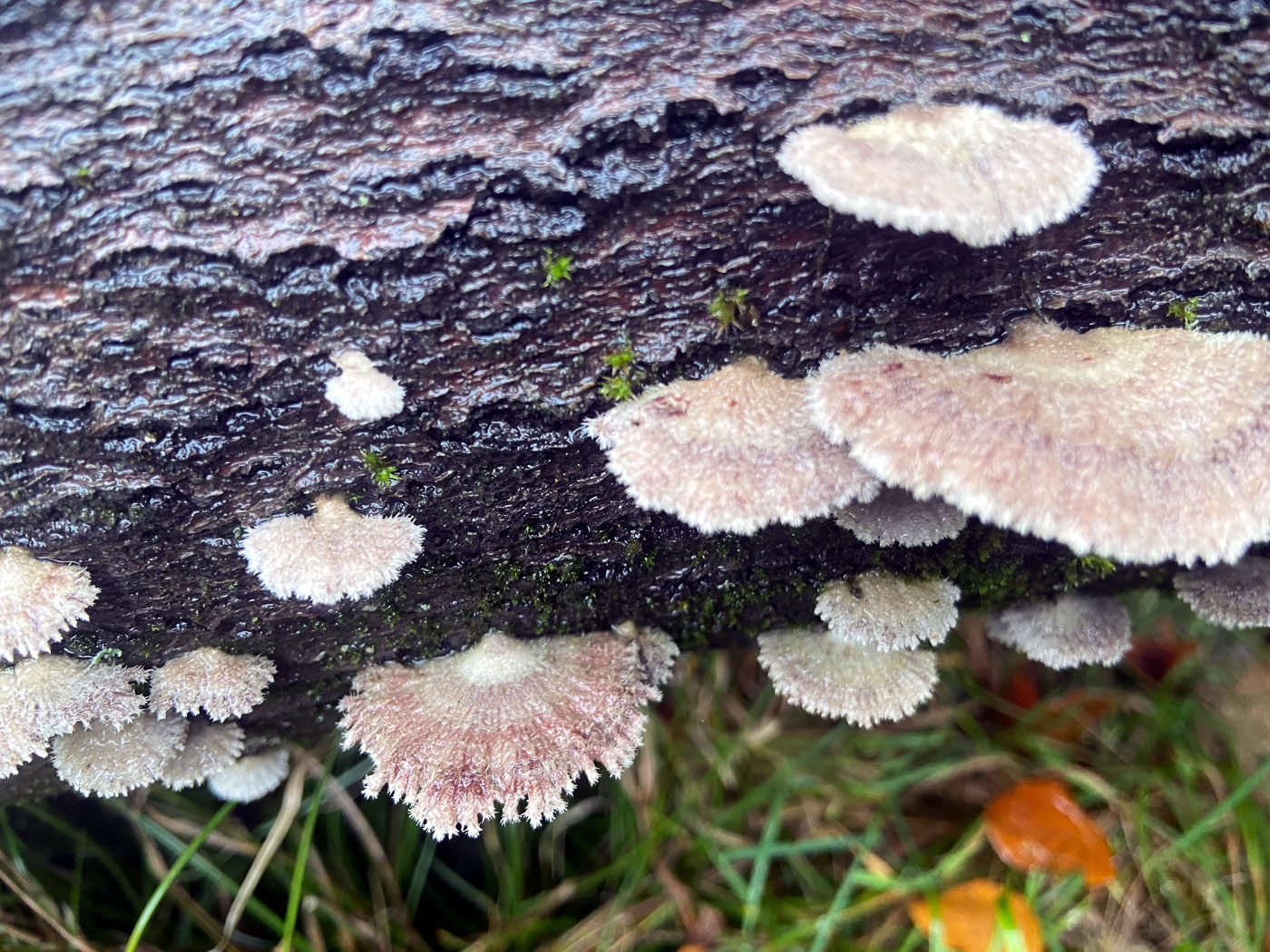
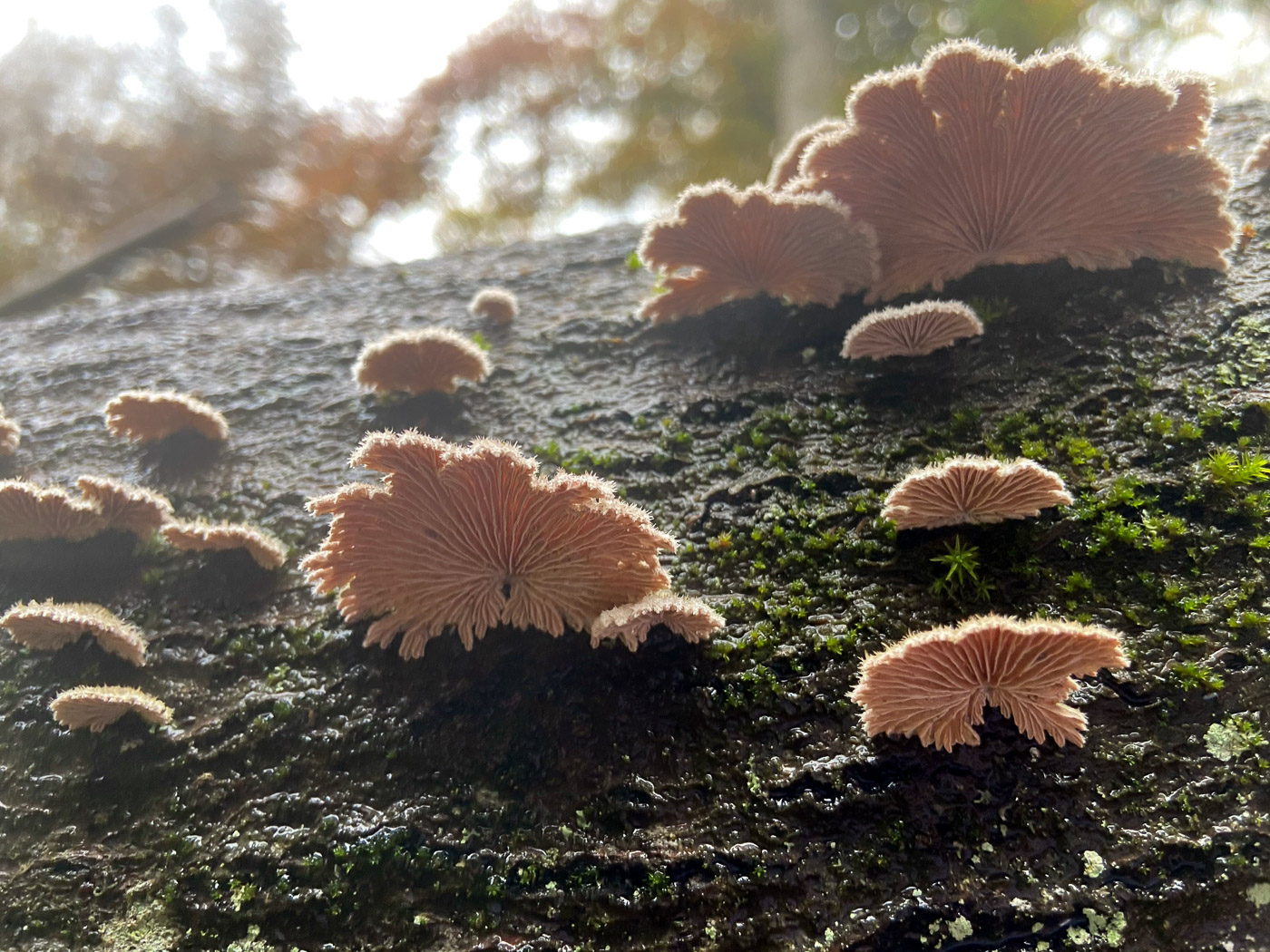
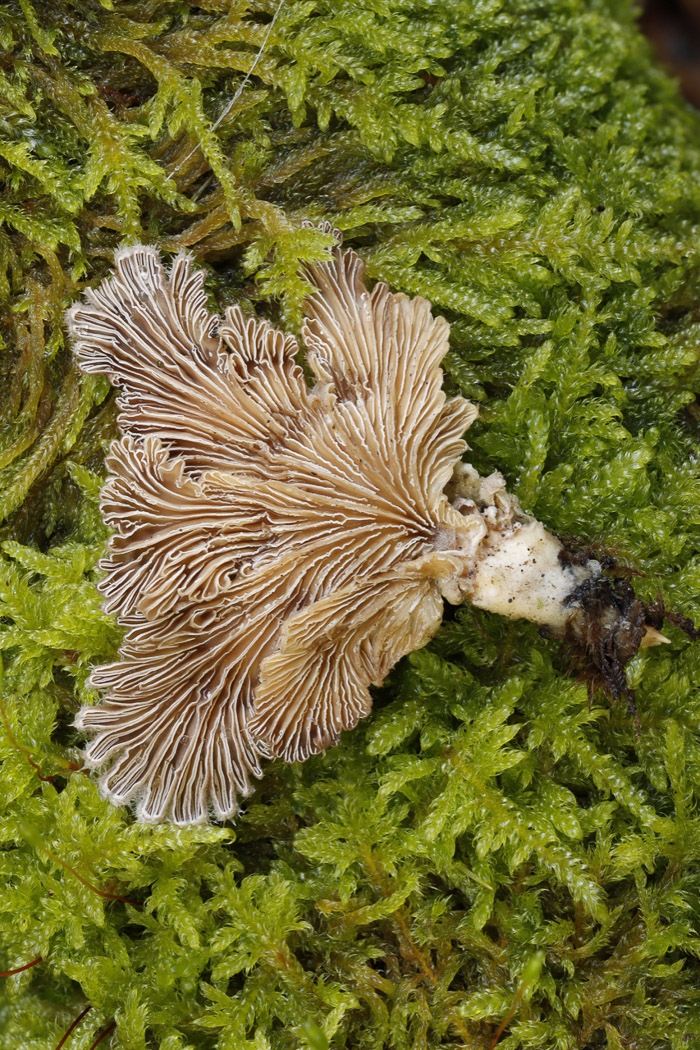 |
October 29th Schizophyllum commune (Splitgill)
Sarah Ebdon found these rather delicate frilly and bracket-like fungi on a fallen Beech trunk in Naphill Common. This strange-looking little fungus is quite common and clusters can grow on a range of woody substrates, also bales of straw and hay in plastic, coconuts, even reportedly inside humans! More like a bracket than a mushroom, it lacks a stem and has a finely hairy surface with a white fluted edge. The pseudogills on the underside split and divide several times before reaching the margin. Each fan can reach about 3-4 cms across and once it becomes dried and shrivelled it has the remarkable property to recover and reshape after rain. Paul Goby found this same species in Naphill Common two weeks ago but Penny C. failed to recognise it at the time! Photo 3 shows Paul's excellent underside view (not his, the fungus's!!).
|
October 28th 2020
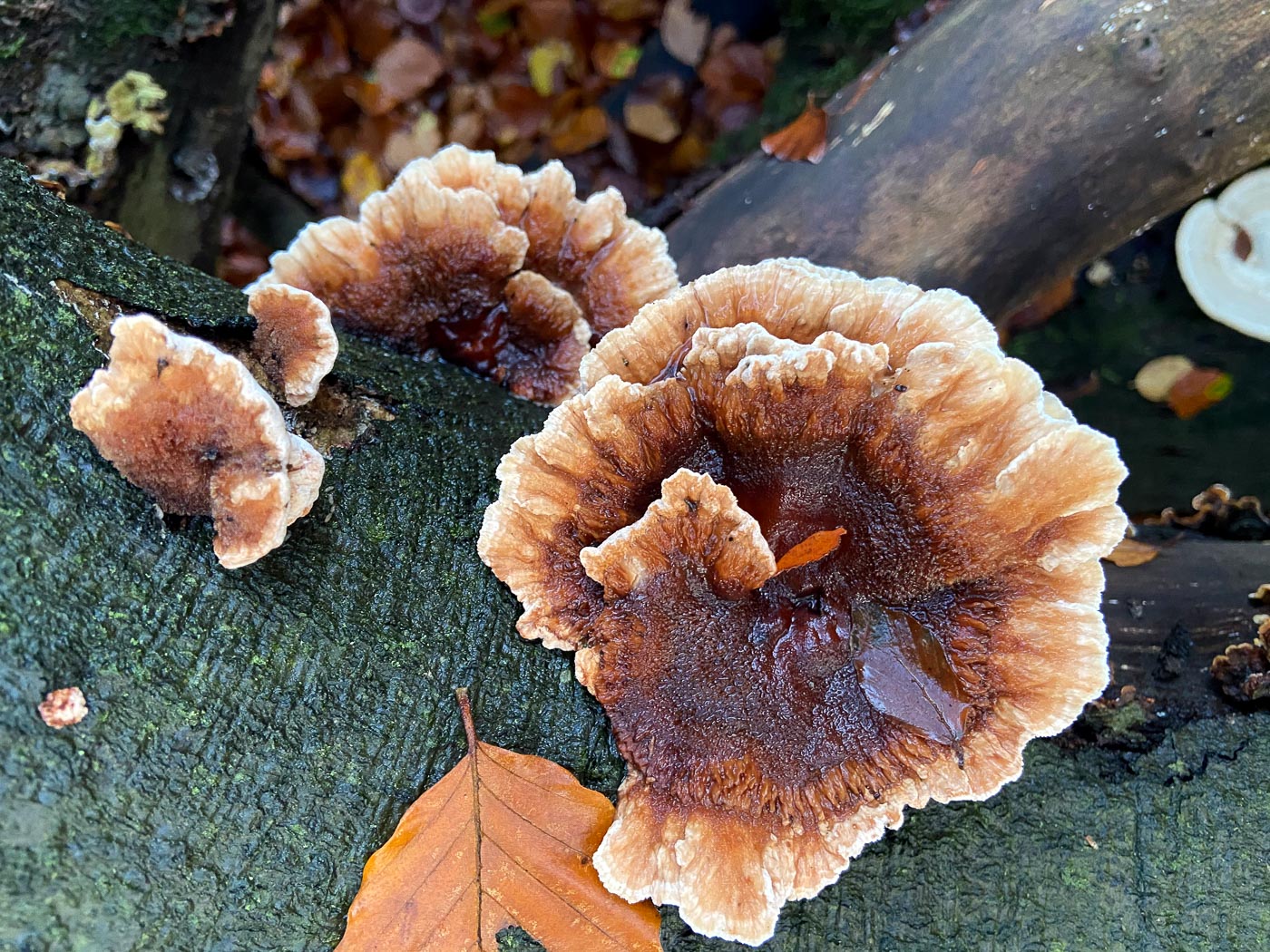
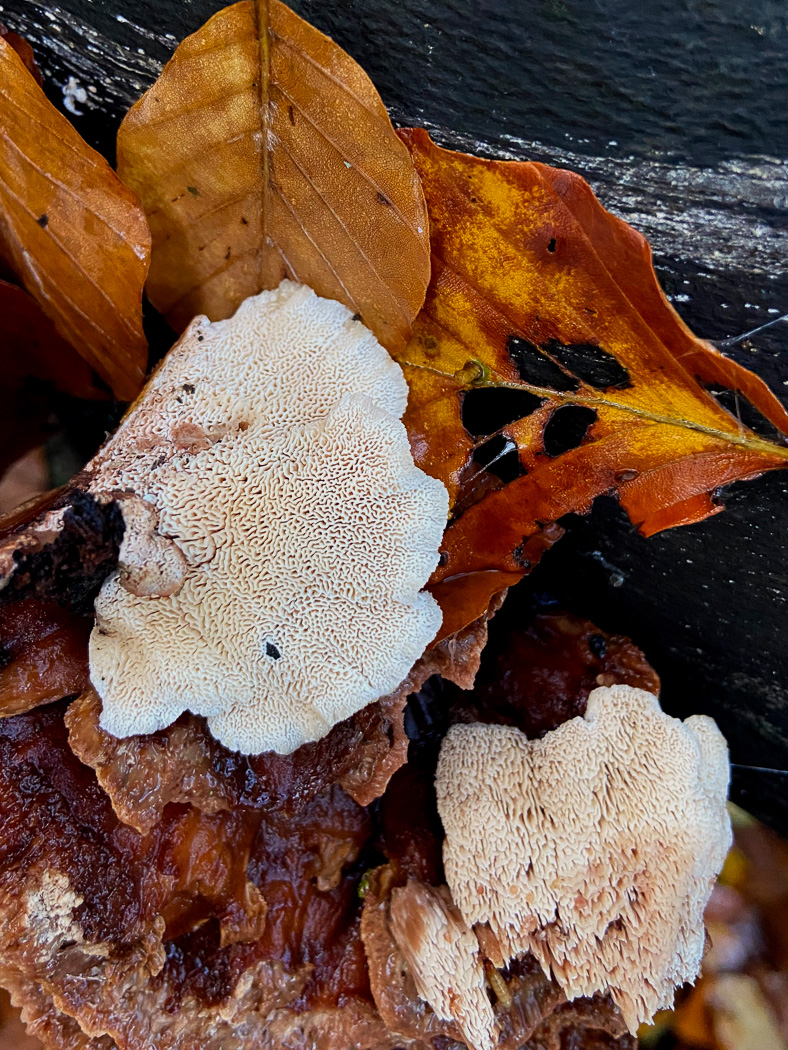 |
October 28th Abortiporus biennis (Blushing Rosette)
On a fallen Beech branch in Naphill Common Sarah Ebdon found this quite common but often confusing bracket. We do have a previous example dated Sept 25, but this is a very variable species, most often found growing on submerged roots as if out of the soil at path edges, and sometimes not forming the typical rosette shape. It is not nearly so common to find it actually on fallen wood as here. The zoning often has a pink tinge, also seen in the underside which is a labyrinthine maze which bruises pink when pressed.
|
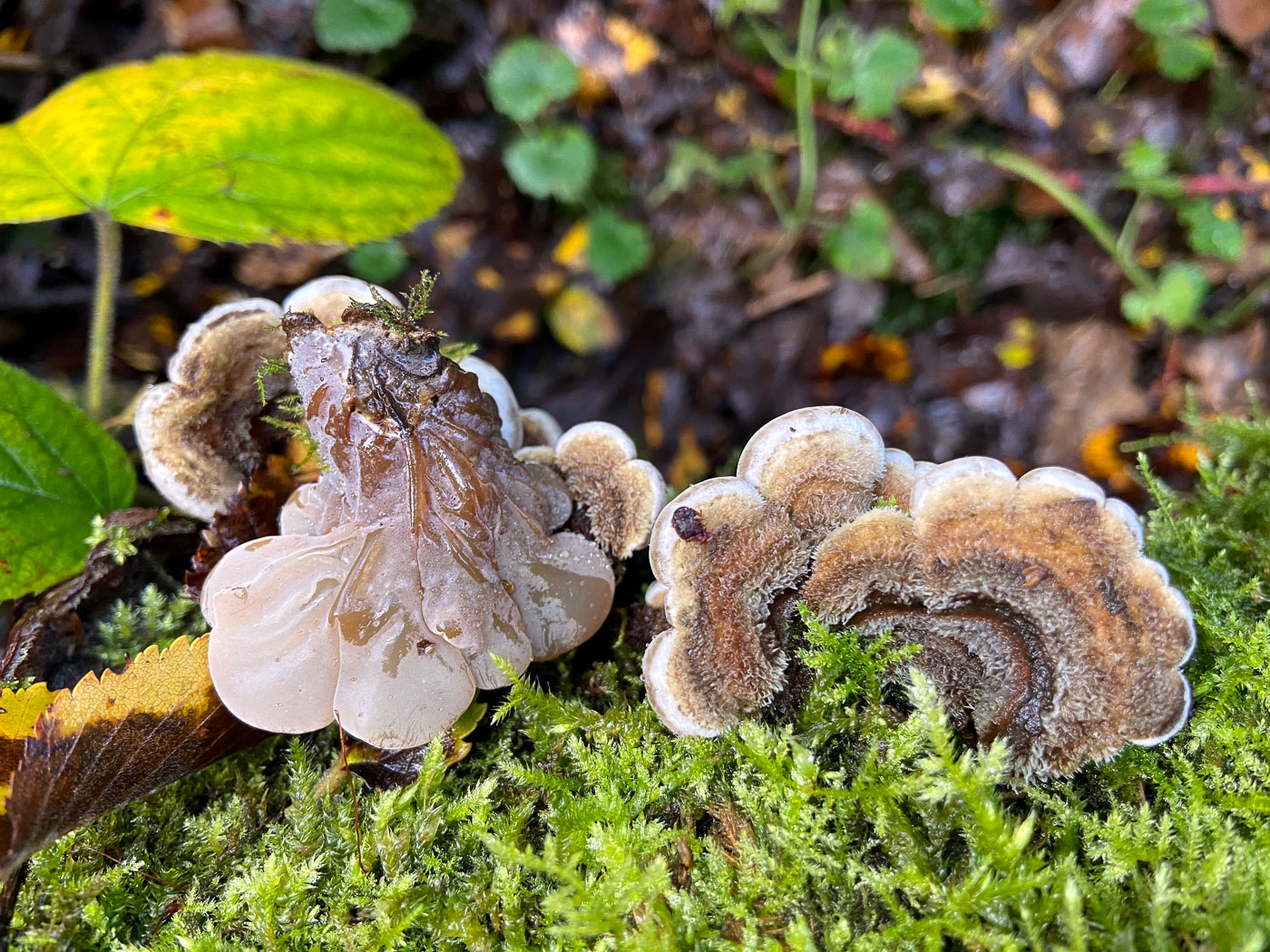
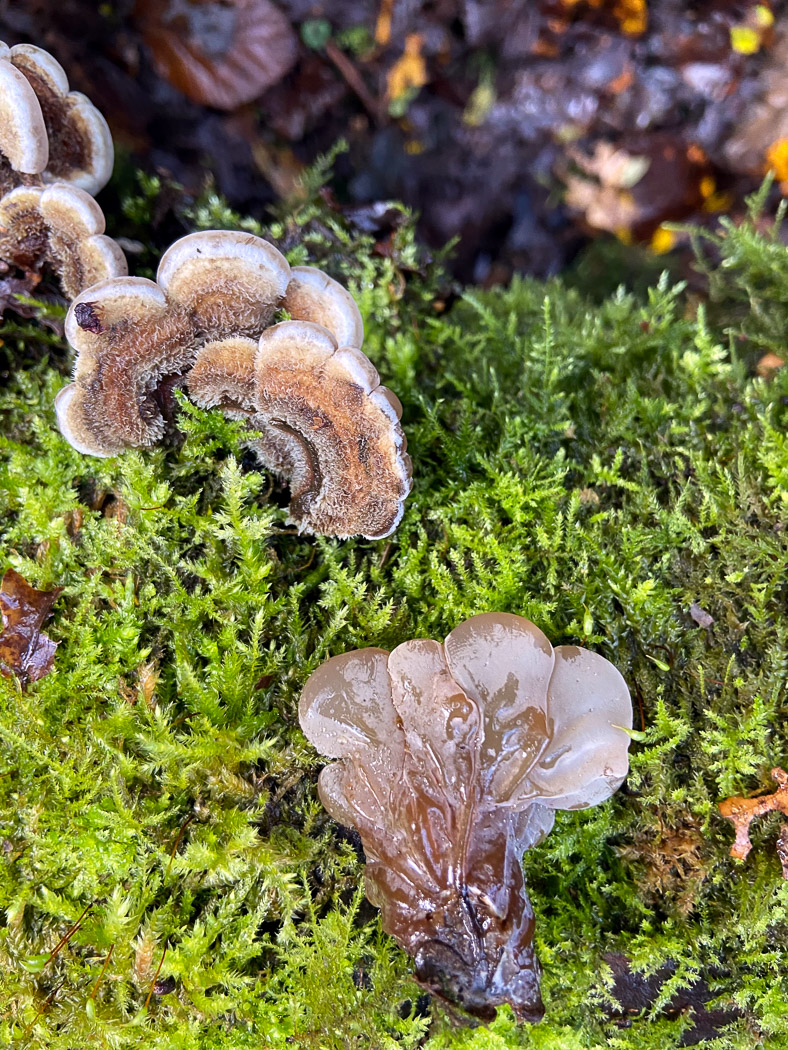 |
October 28th Auricularia mesenterica (Tripe Fungus)
Sarah Ebdon came across this interesting species on a mossy deciduous log in Naphill Common. From above the surface is not unlike one of the slightly hairy and zoned brackets, but turn a bit over and you know you have something completely different! Here the pinkish to purply gelatinous underside is clearly quite similar to that of Jelly Ear (see photo dated Oct 25th) to which it is closely related. It is not that common a species and can be found on fallen deciduous trunks / logs, particularly Beech and Maple.
|
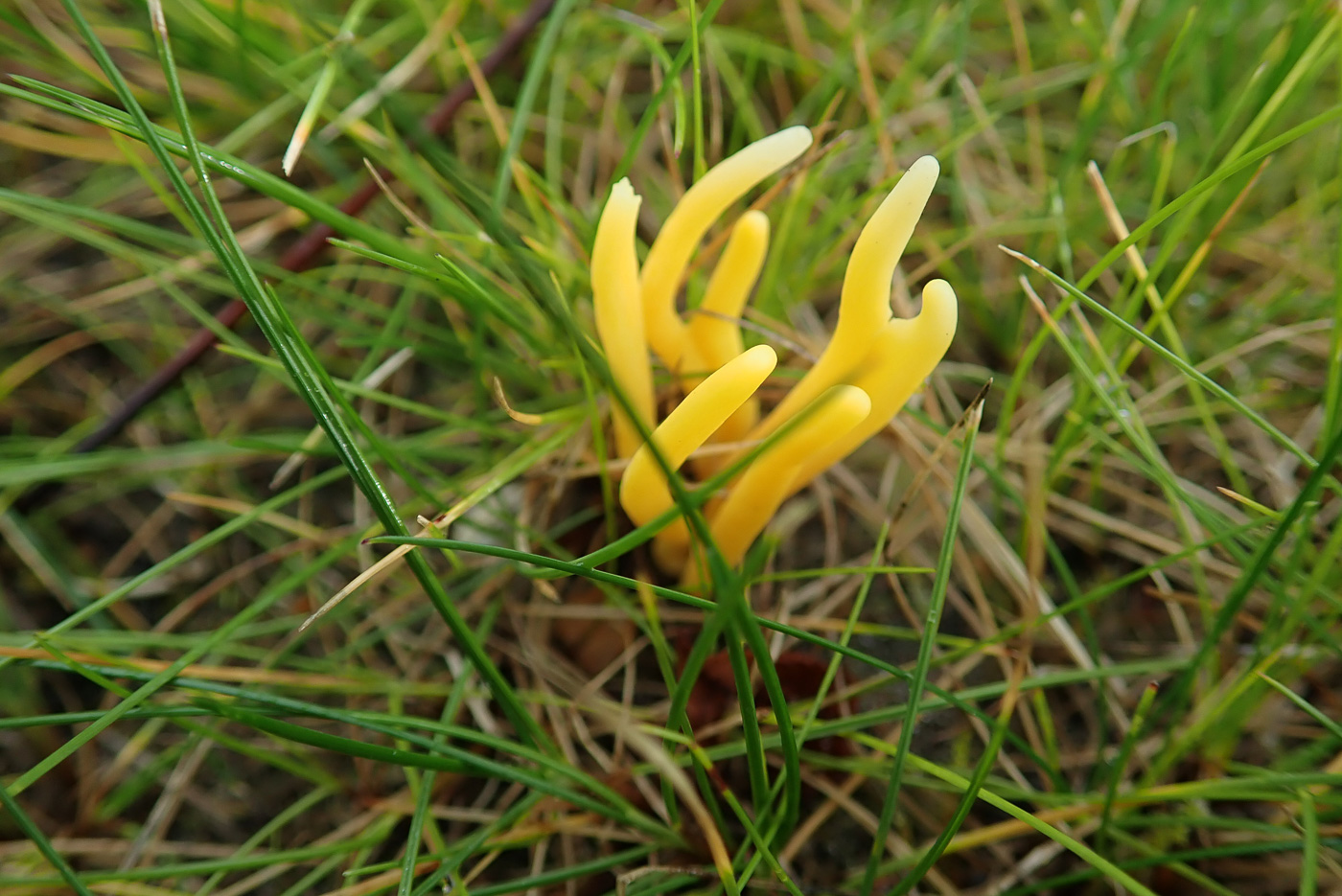
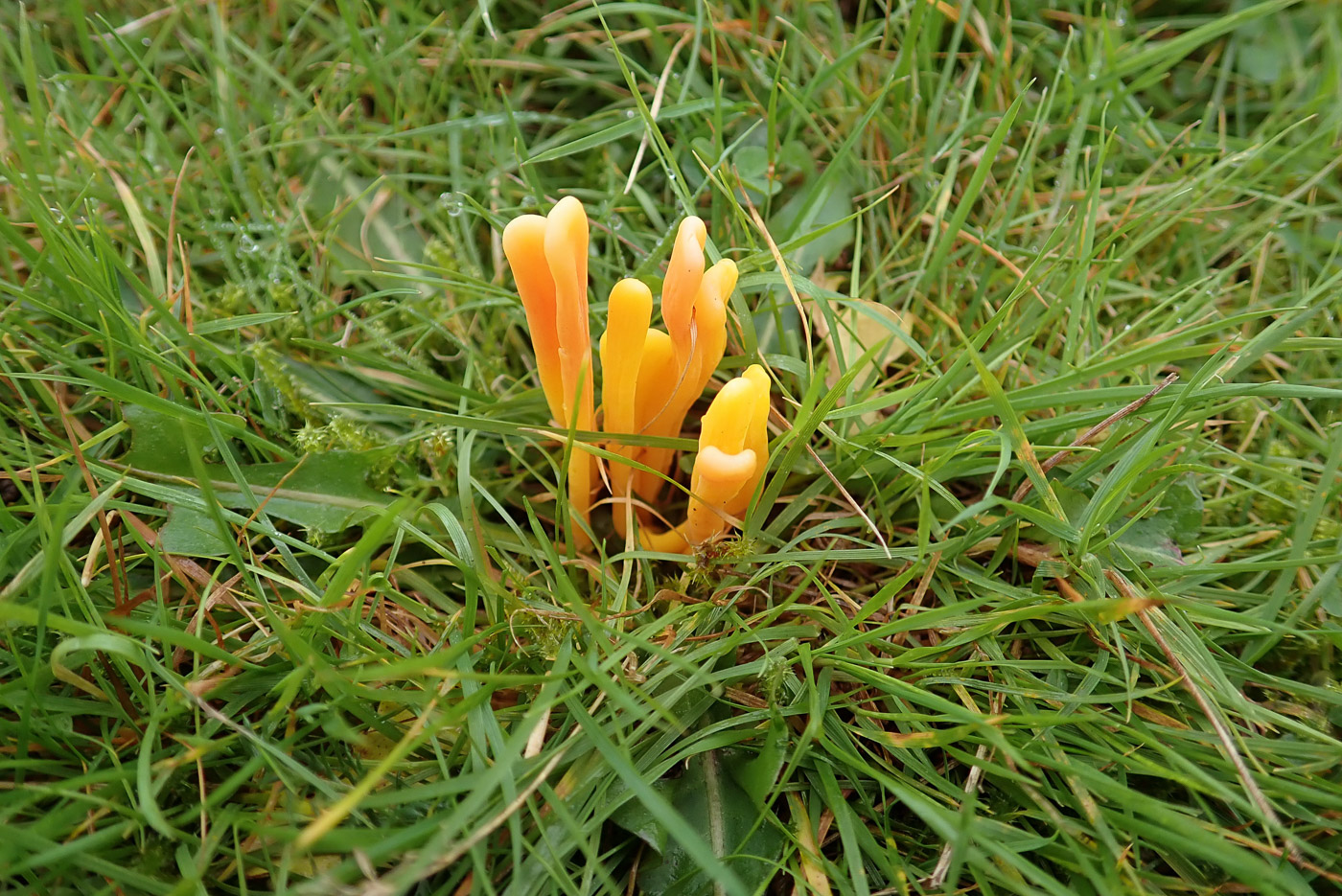 |
October 28th Clavulinopsis helvola (Yellow Club) 
We already have this species dated Oct 03, but today in the lawns at Stoke Poges Memorial Gardens there were literally hundreds of these tiny clubs. Penny C. suspected that there must be more than one of the three extremely similar clubs present and collected two samples, one bright yellow clump and one distinctly orange clump, to check later. She was wrong! Both had the same spores with knobbles which separate C. helvola from the other two species. This just goes to show how some species cannot be named with any certainty in the field.
|
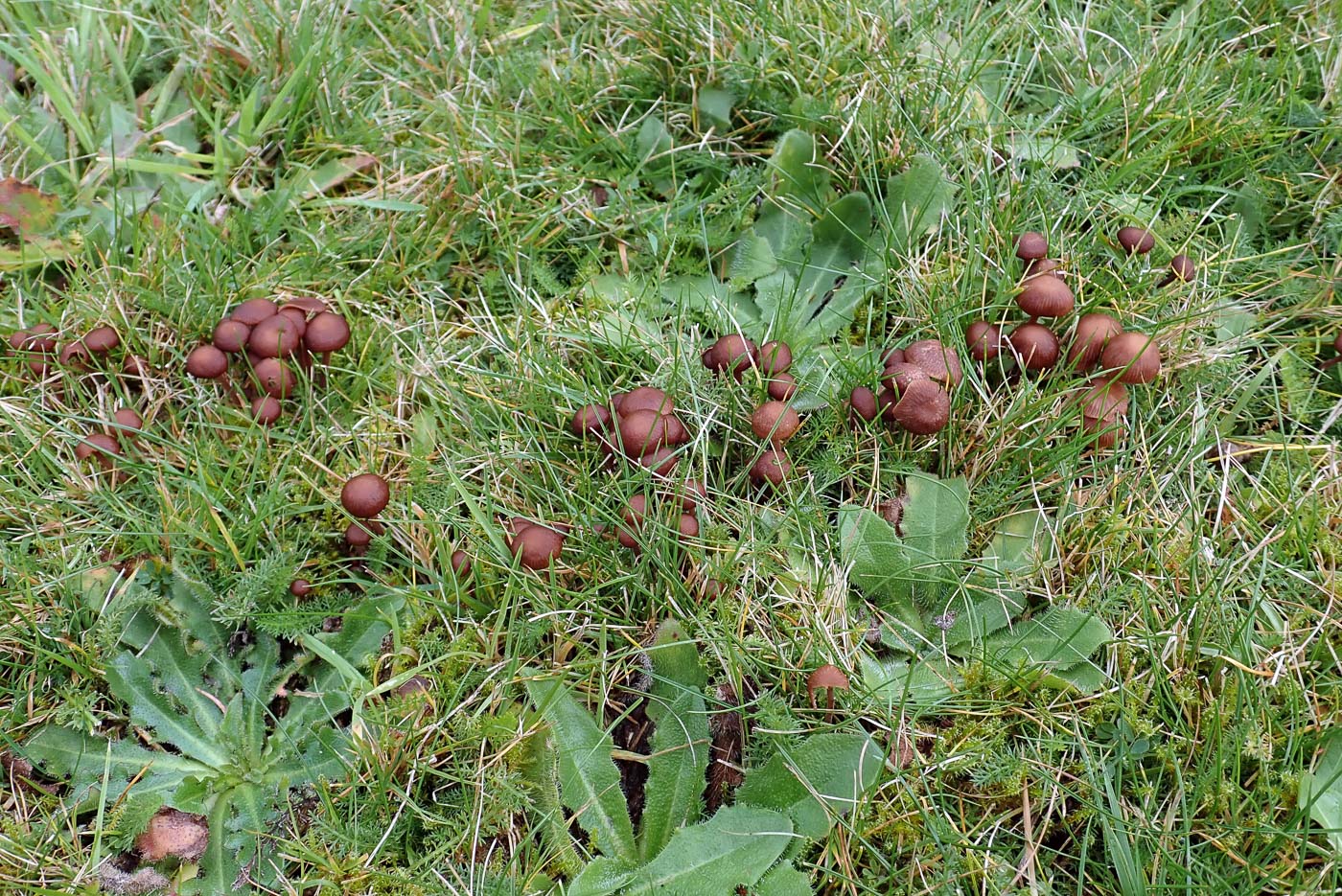
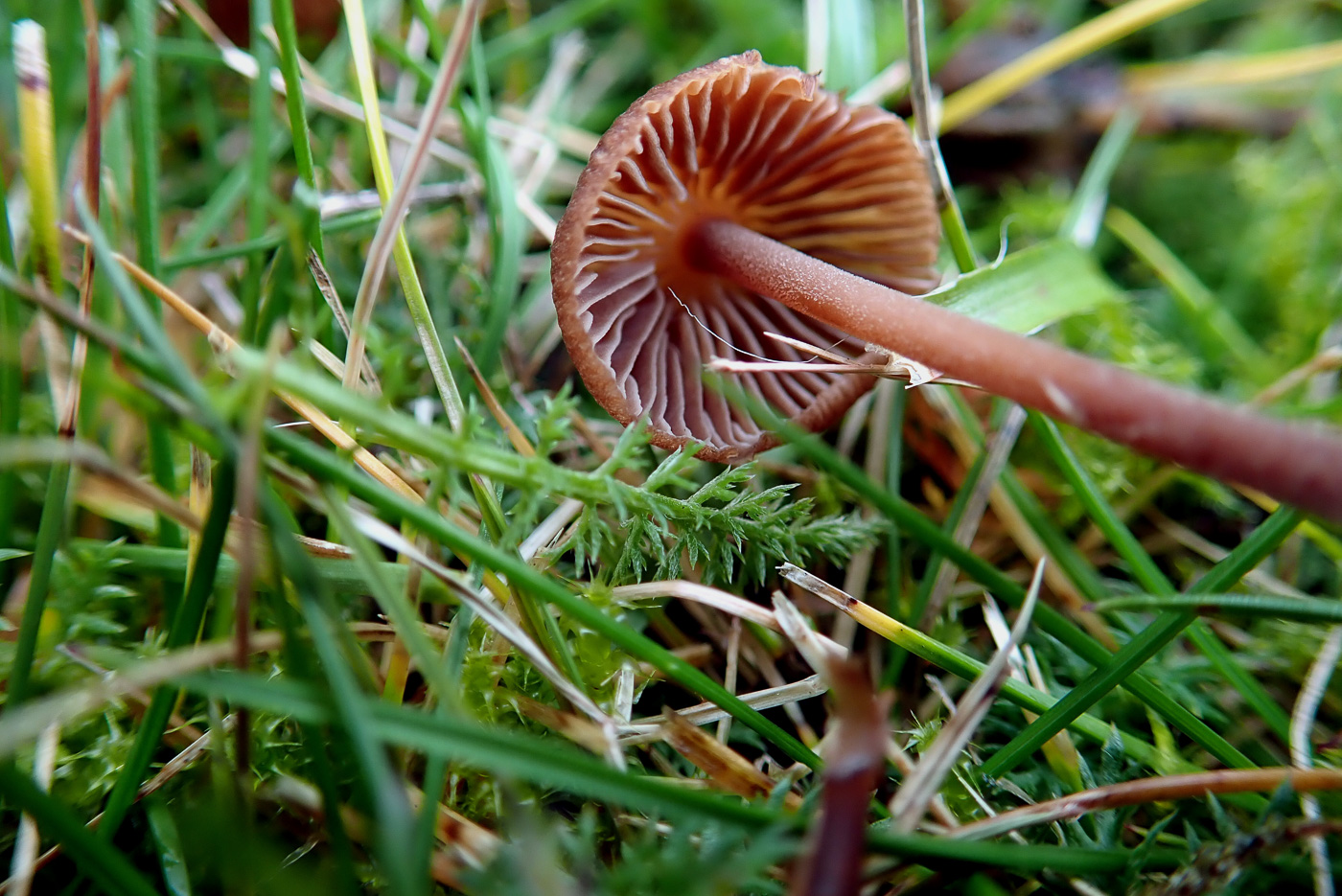 |
October 28th Marasmiellus villosipes (a mushroom with no common name recently new to the UK) 
On a small square of lawn between shrub beds in Stoke Poges Memorial Gardens Penny C. noticed a semicircle of unfamiliar small dark purple brown to reddish brown caps just emerging through the grass. On further inspection they had concolorous quite widely spaced almost free gills and a concolorous stem which was finely hairy all over. The caps were only 1 cm across and some were showing signs of fading at the centre as they dried. Working on it at home took her to Gymnopus obscuroides, a species first described in 2008, included in Kibby vol 2, and very close to G. fuscopurpureus. However, this collection didn't fit either species exactly and as a result of DNA sequencing has now proved to be Marasmiellus villosipes,first described in 1997 from California when placed in Gymnopus but consequently moved to Marasmiellus. It was then found new to Britain in the Isle of Wight last year so this find is significant - not just new to the county but one of only a handful of British records for the species.
|
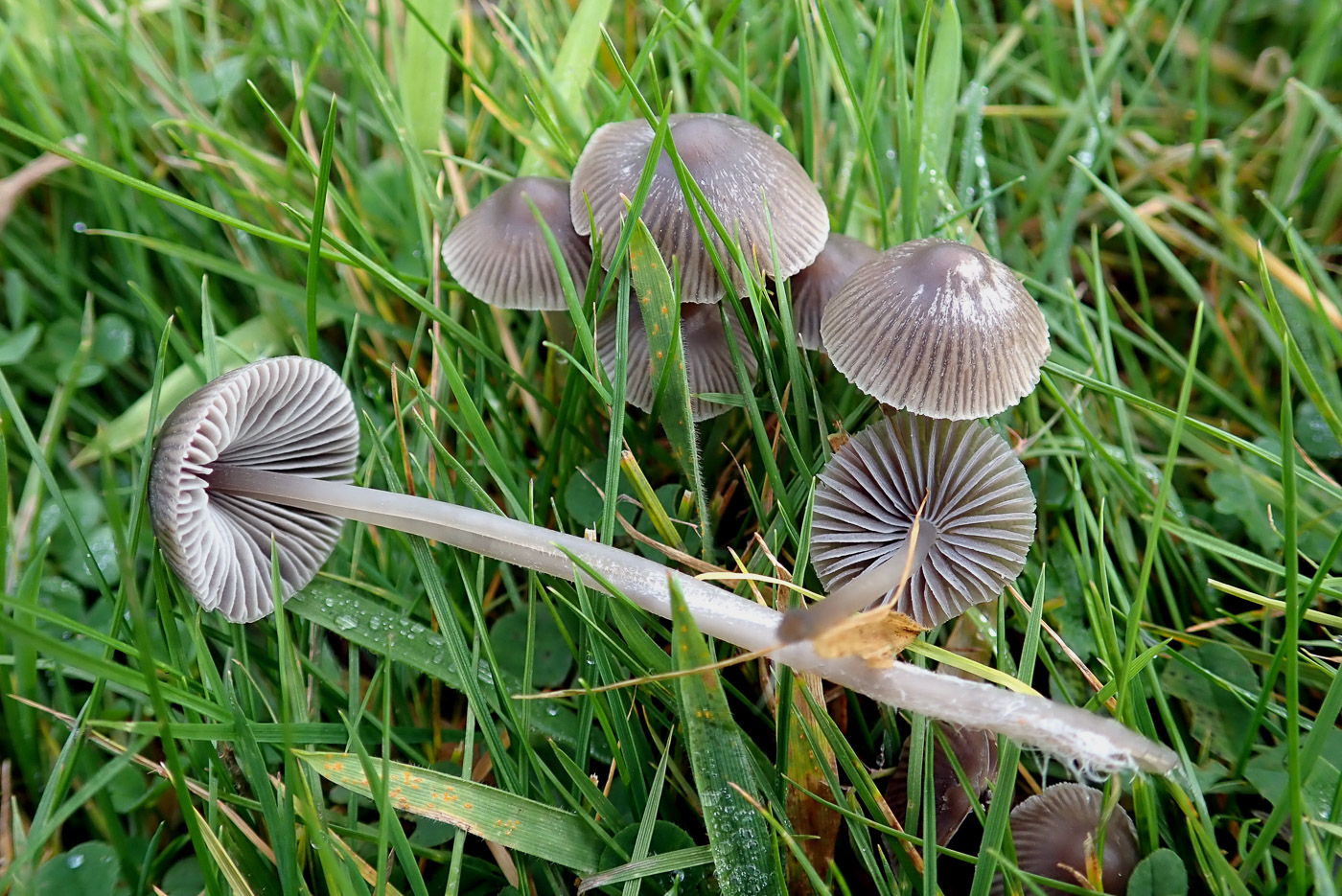 |
October 28th Mycena aetites (Drab Bonnet)
Penny C. found many examples of this grassland Bonnet in Stoke Poges Memorial Gardens. It's quite an easy Bonnet to recognise in the field if all the available features are taken into account together: Not just the grey cap but grey gills as well (this is unusual), cap translucently striate in damp conditions (as here), its occurrence on lawns / in grass, and its strong nitrous smell of beach. N.B. Other Bonnets have this smell also but not with this set of features.
|
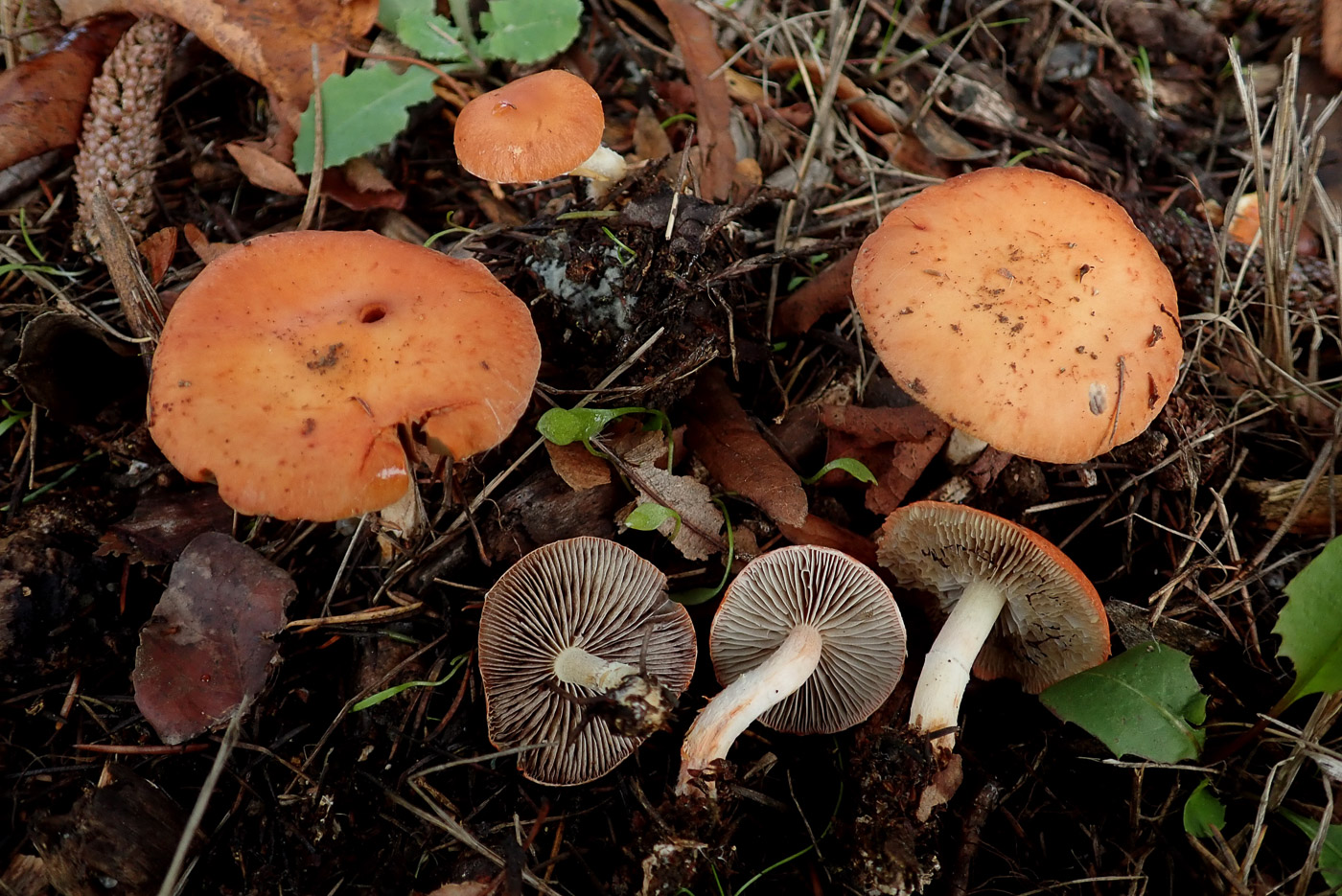
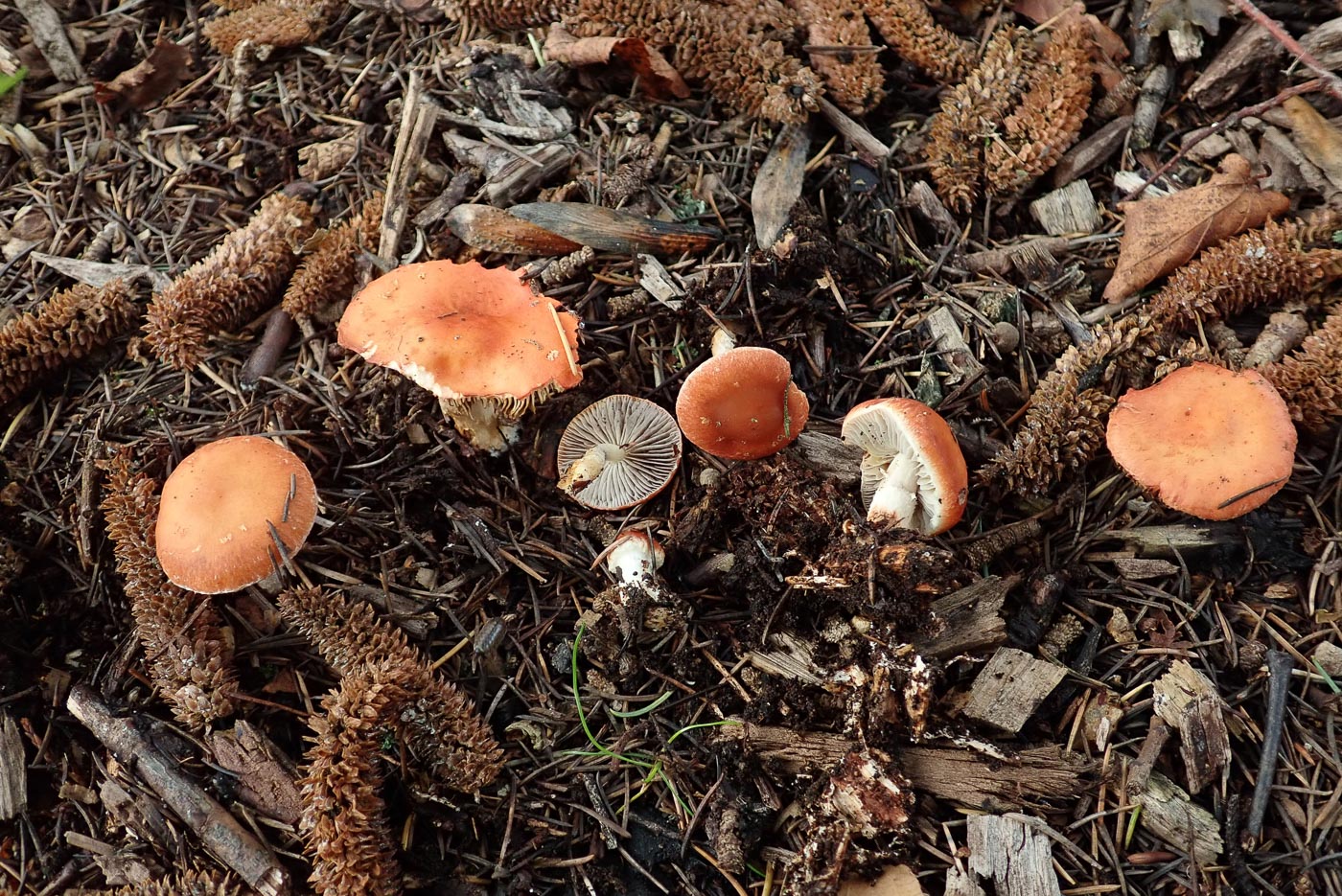 |
October 28th Leratiomyces ceres (Redlead Roundhead)
Paul and Penny C. found a patch of these brightly coloured mushrooms on woodchip in Stoke Poges Memorial Gardens. Previously known as Stropharia aurantiaca, this is a species which rare in the UK in the '80s - probably imported from Europe with woodchip - and has rapidly spread becoming very common wherever woodchip is used. Caps can get to about 4 cms across, gills are eventually dark greyish, stem is white with remnants of a ring zone. The orange cap colour and woodchip substrate make this an easy species to identify.
|
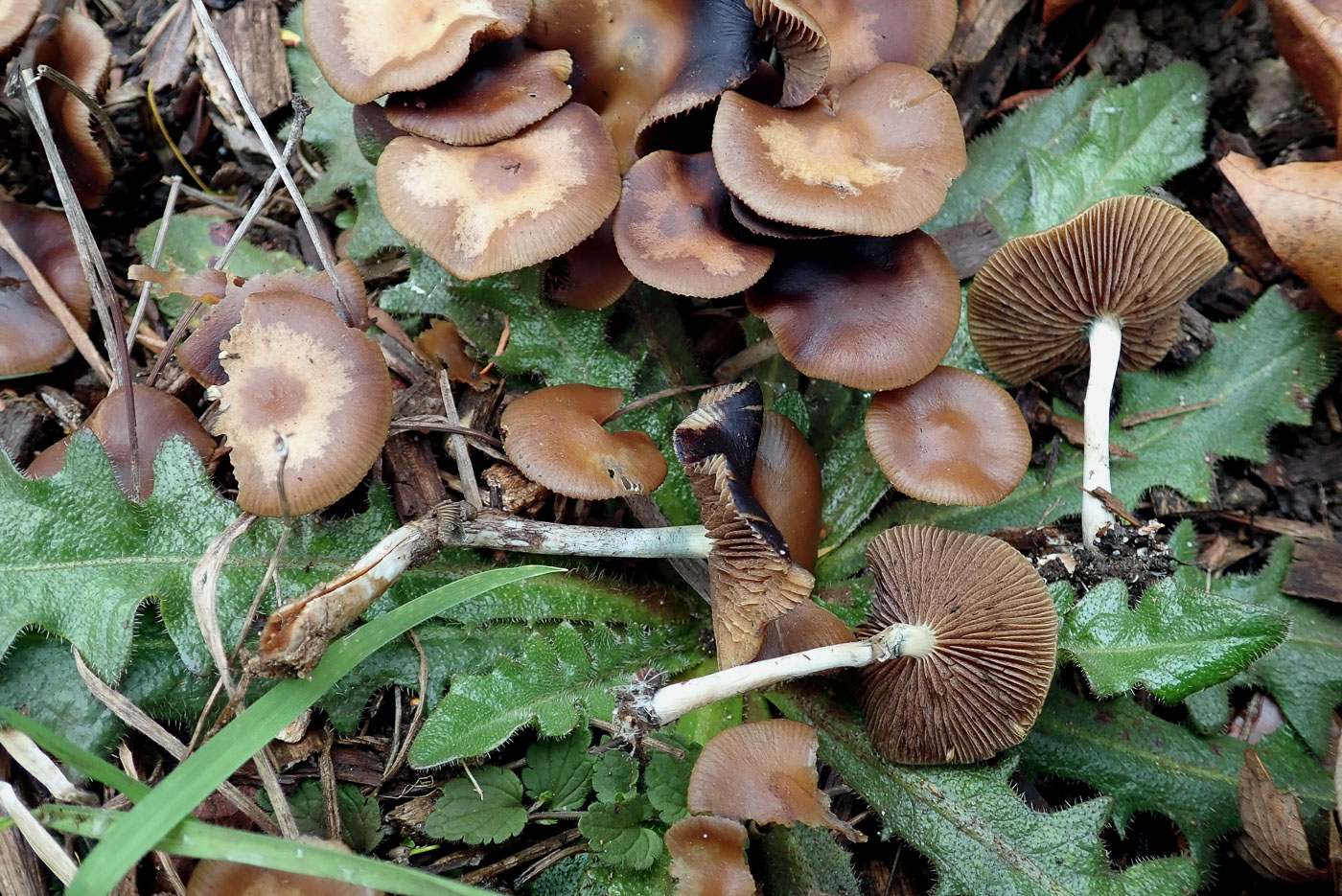
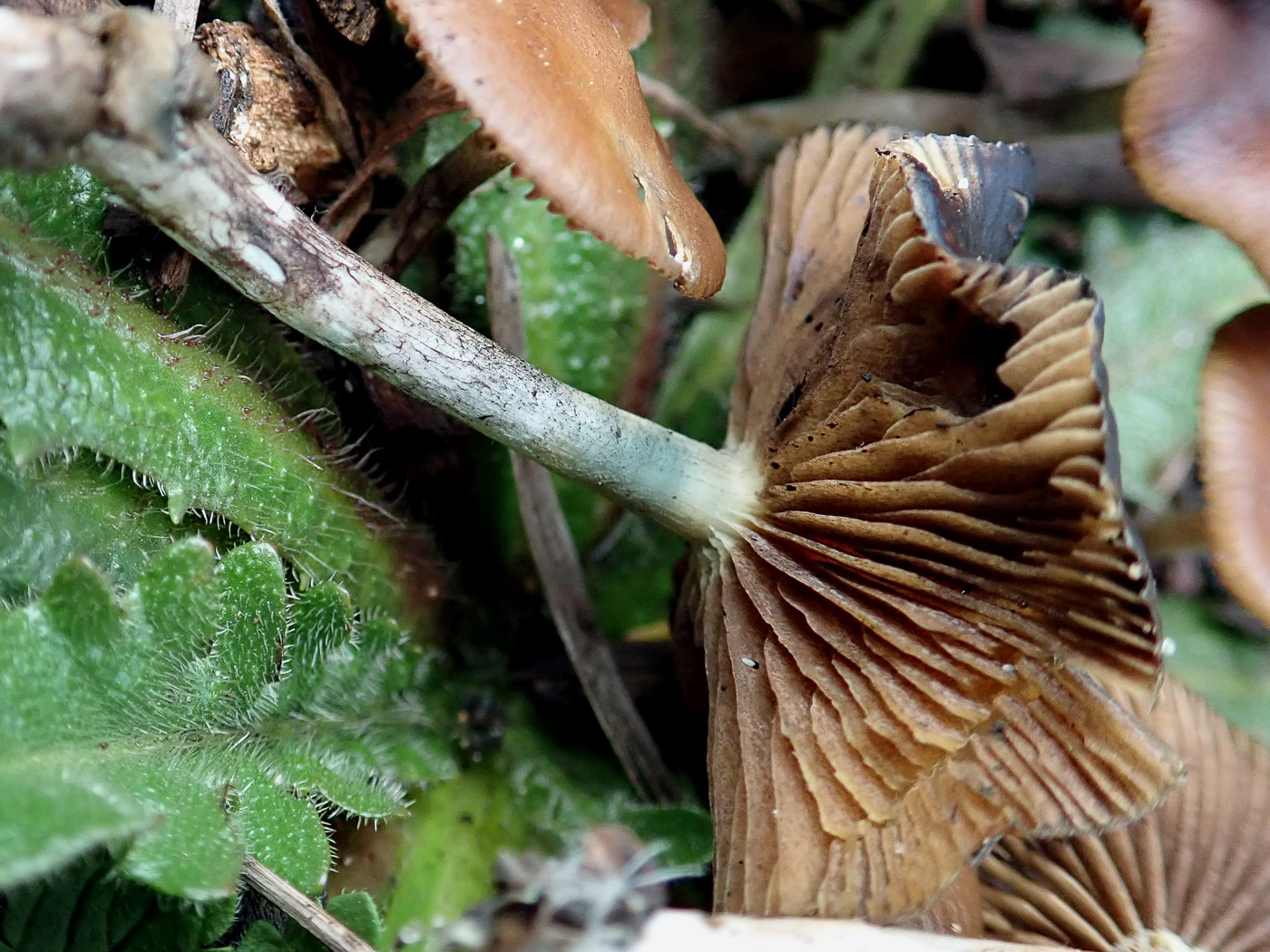 |
October 28th Psilocybe cyanescens (Blueleg Brownie)
Penny C. found a large clump of this uncommon species fruiting in woodchips at Stoke Poges Memorial Gardens, one of just a few sites that we know of in the county the species. Initially it is much like many other brown-capped hygrophanous mushrooms which frequent this substrate, but as soon as you look below the cap and notice the dark gills and more importantly signs of blue-green staining on the stem - a unique feature - you have the information needed to name it in the field.
|
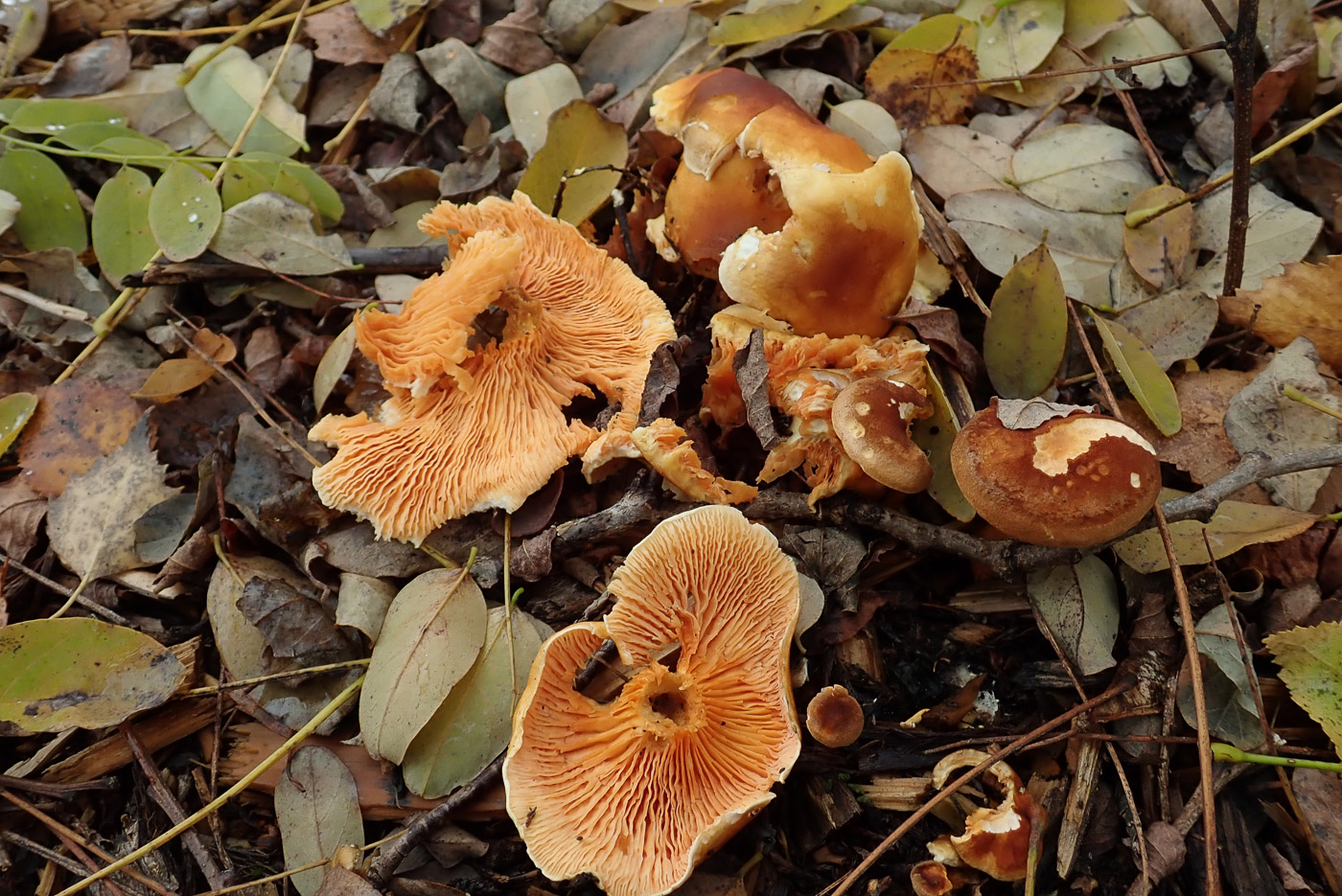
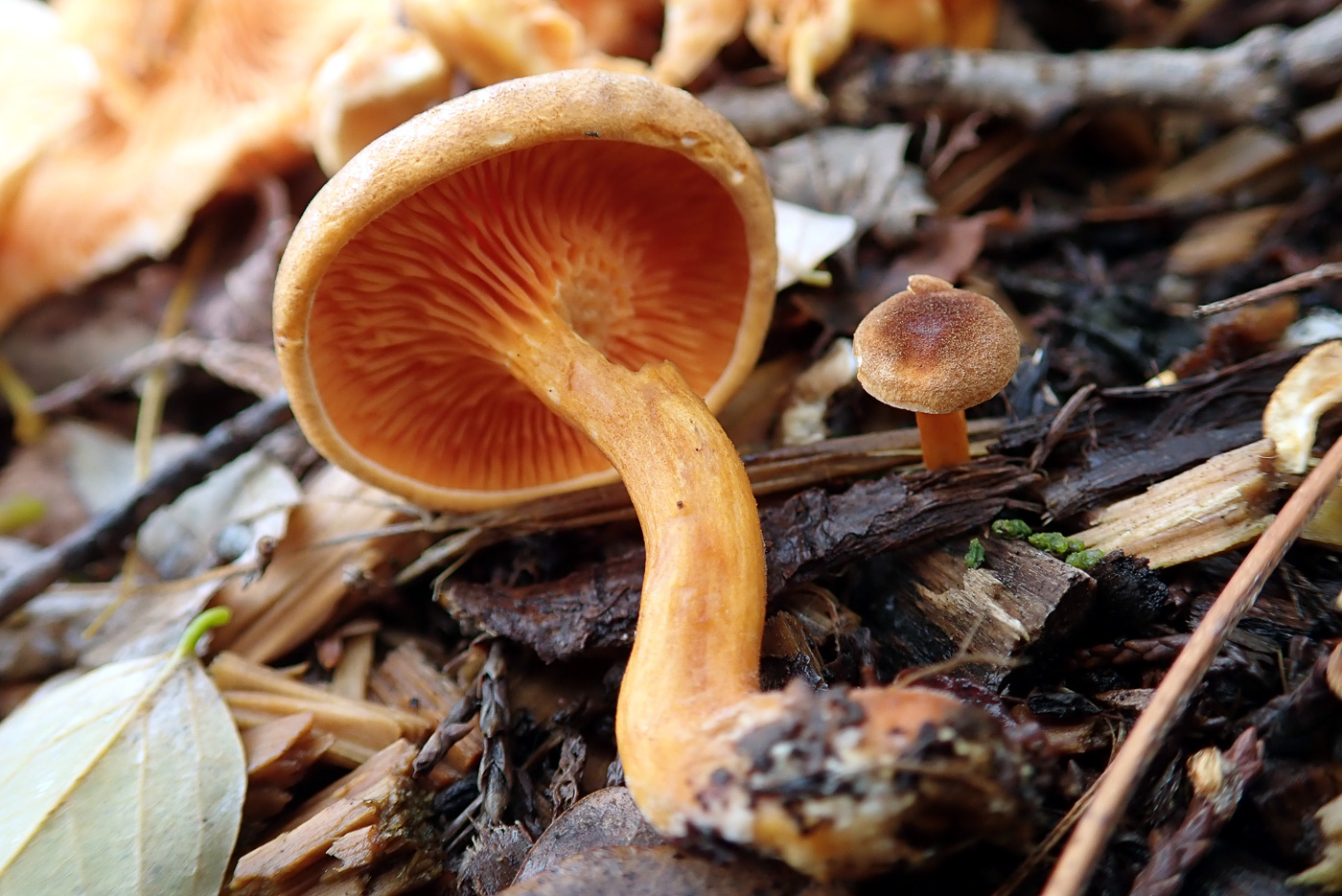 |
October 28th Hygrophoropsis rufa (a False Chanterelle with no common name)
Yesterday Penny C. found the common H. aurantiaca starting to fruit so she was not surprised to find more of it today at Stoke Poges Memorial Gardens. She'd forgotten, however, that last year at this time here she’d found this much rarer - or at least rarely recorded - species which has a darker rufous cap coated in fine dark hairs and also distinctly darker orange gills. A small collection was growing in woodchip under Birch. Our only previous county records are from Stowe Landscape Gardens and today's site last year. The species is illustrated in Kibby vol 1.
|
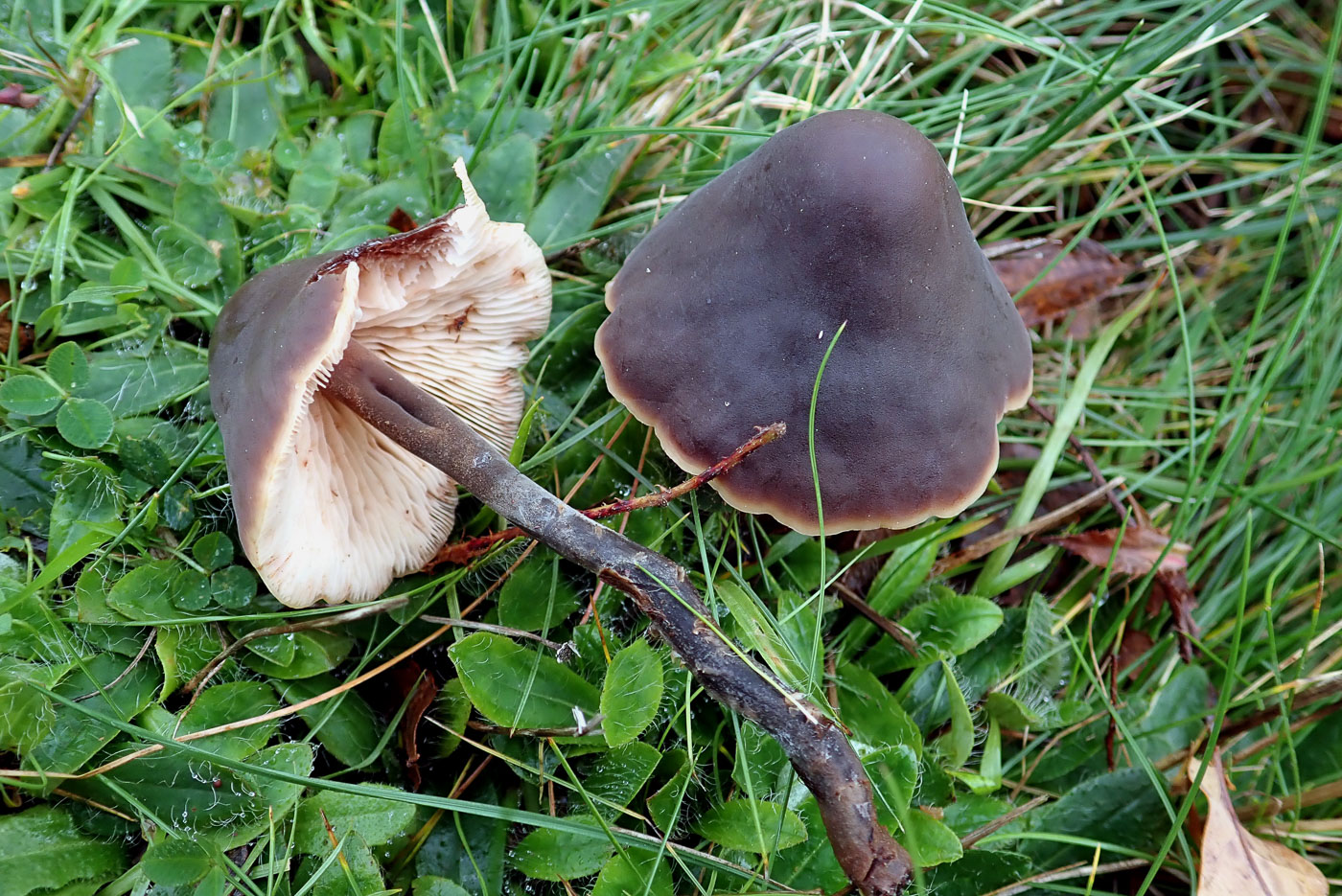
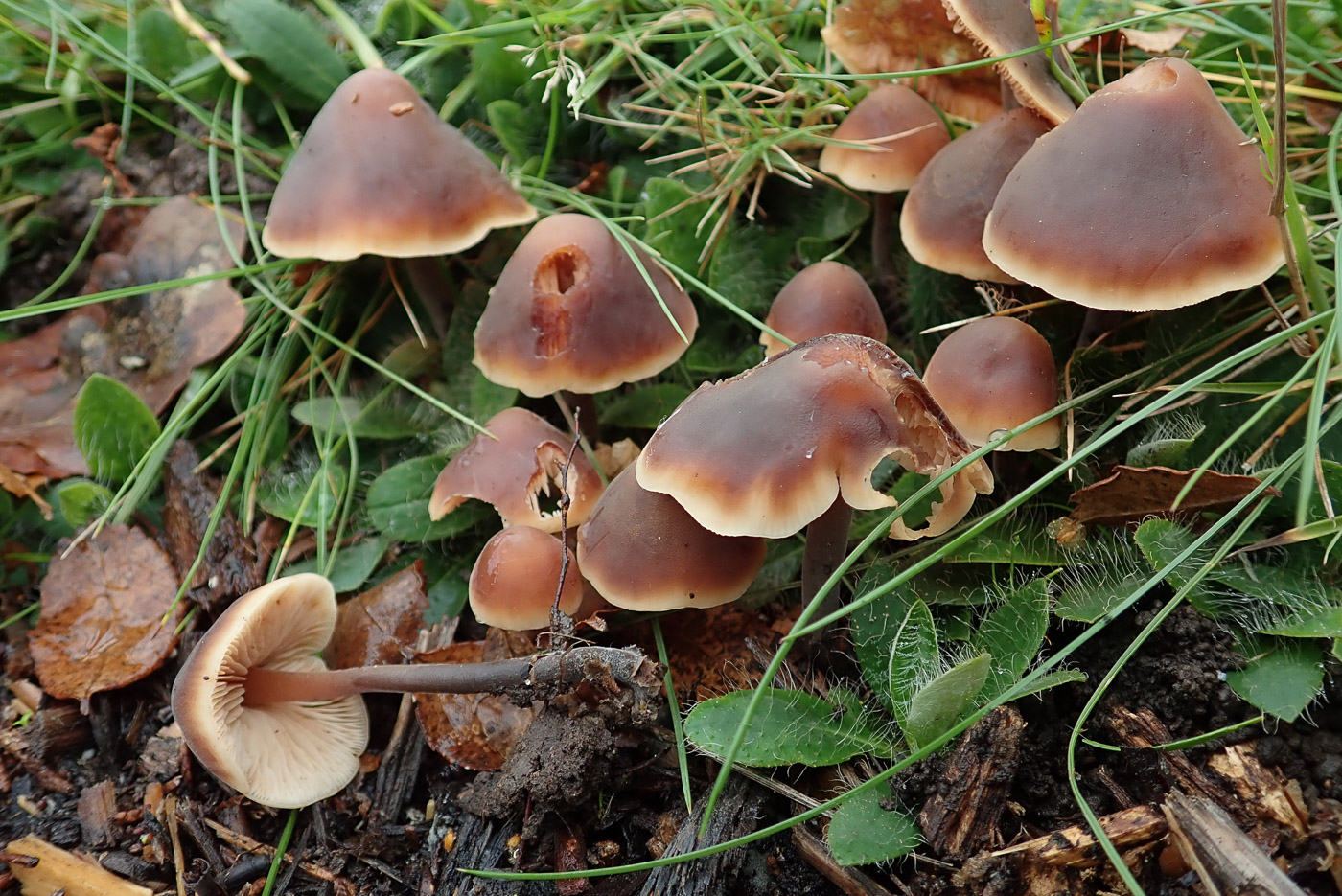 |
October 28th Macrocystidia cucumis (Cucumber Cap)
Paul C. found a beautiful collection of this quite unusual species growing in weedy woodchips in Stoke Poges Memorial Gardens (photo Penny C.) The dark brown cap with white rim when mature is typical, also the pale crowded gills and dark stem, but the key feature is its distinct smell - one about which there is often discussion and even disagreement! For some it reminds of cucumber sandwiches (hence its common name), but for many - Penny amongst them - the dominant smell reminds them of being forced to take a spoonful of cod liver oil as a child! If you crush the gills or place a specimen in a pot for a bit, the fishy smell becomes really clear and pervasive!
|
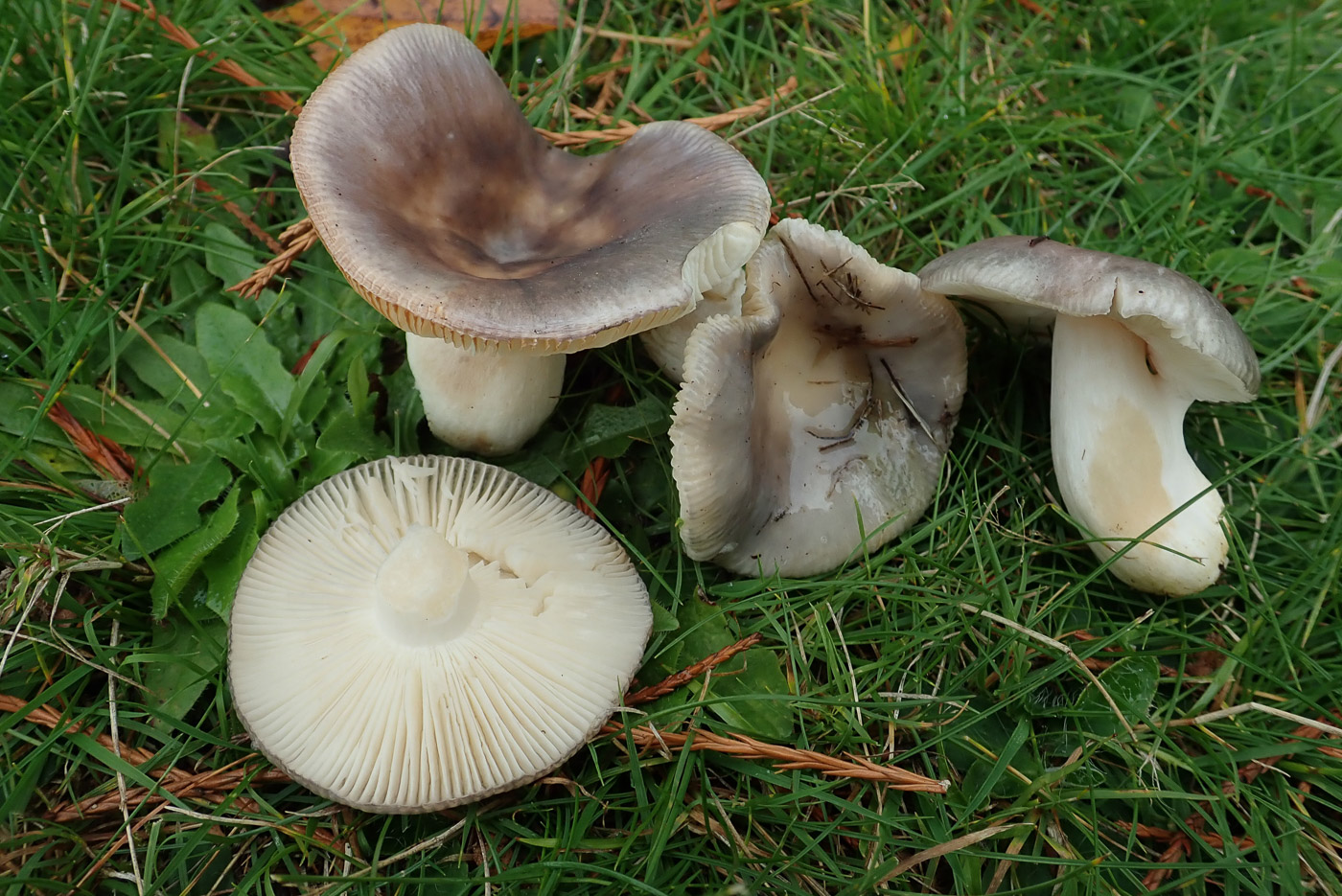 |
October 28th Russula grisea (False Charcoal Burner)
Paul and Penny C. found good numbers of this Brittlegill – one which is quite common at Stoke Poges Memorial Gardens though has often caused Penny doubts when found here. Collections here tend to be rather paler and less colourful than usual, also with a rather weak reaction on the stem when rubbed with an iron salts crystal (seen on the RH specimen). It was not until a sample from here was sequenced in 2024 and confirmed as R. grisea that she felt confident that this wasn't just rather washed out R. parazurea.
|
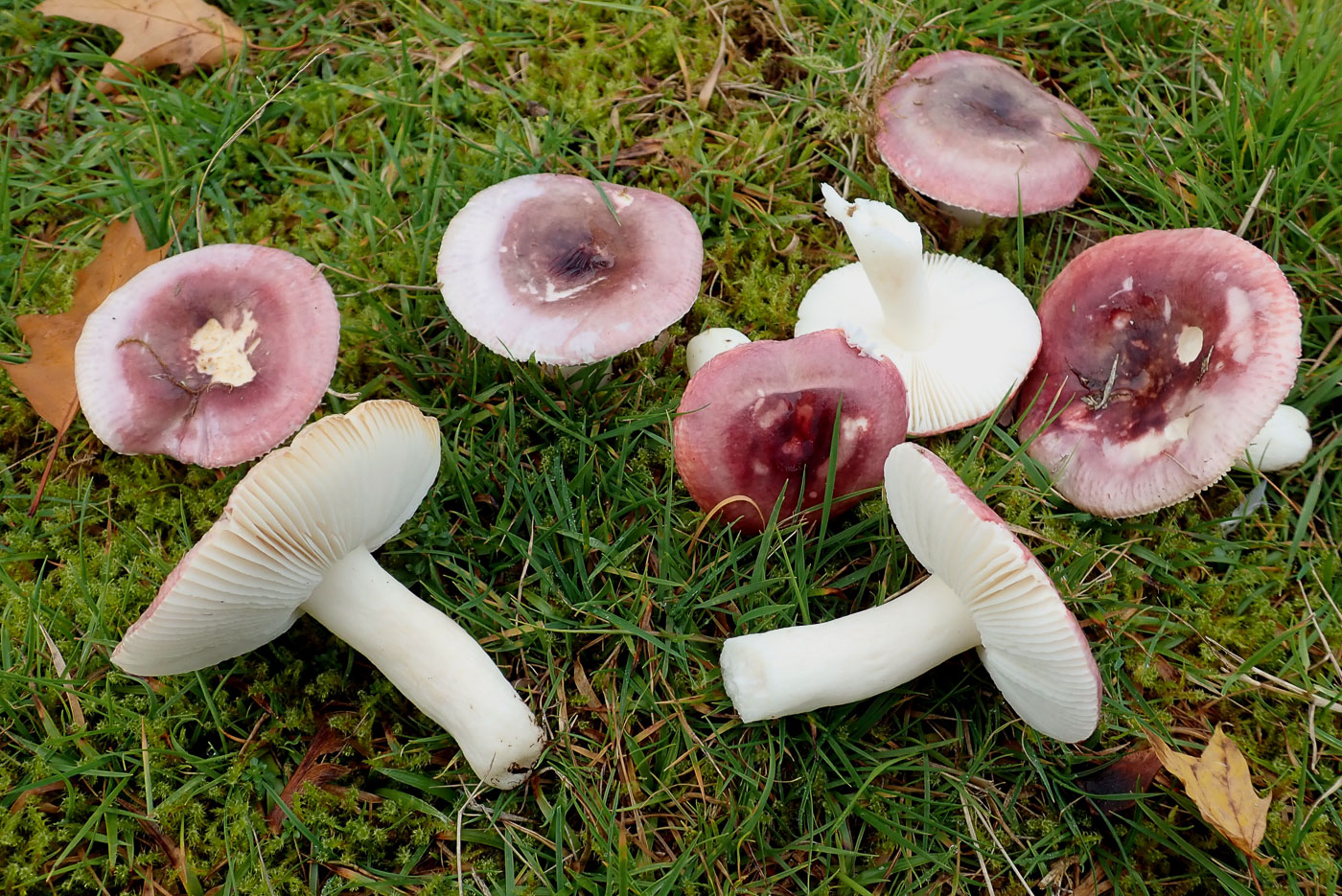
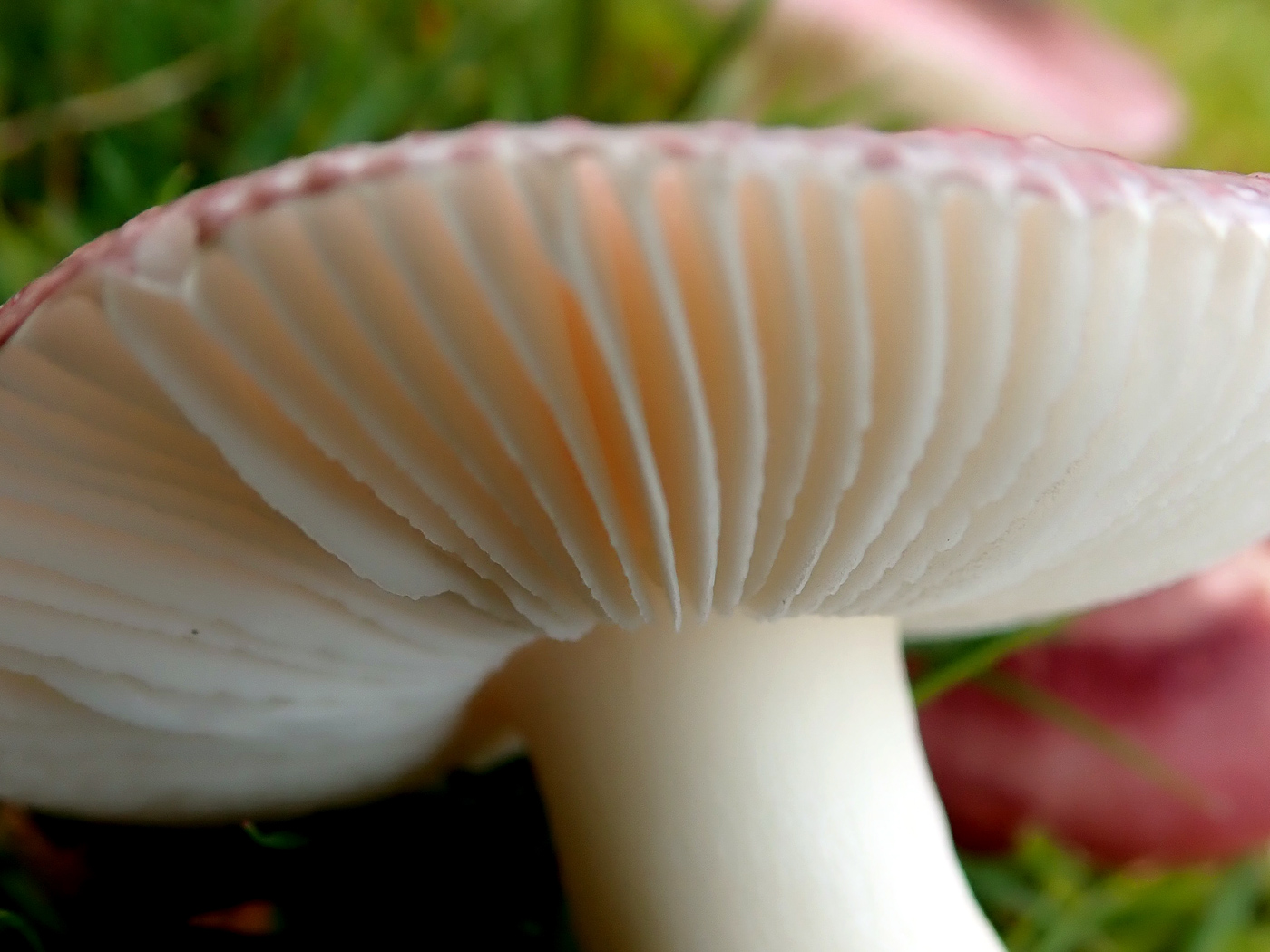 |
October 28th Russula fragilis (Fragile Brittlegill)
Alison Peace found and identified this Brittlegill which was fruiting under Oak at Stoke Poges Memorial Gardens. One of the many members of the genus with caps some shade of red, this species has two redeeming features which make it recognisable in the field: firstly the cap colour, though variable, is pink with a touch of lilac and often partly with a tinge of green also - seen in the top right specimen. Secondly the edge of the white gills is finely serrated - best seen with a handlens but just visible in photo 2. So if you find a pink-capped Russula under Oak and notice the lilac or green tints, it's worth checking the gill edge carefully for the jagged edge of this quite common species.
|
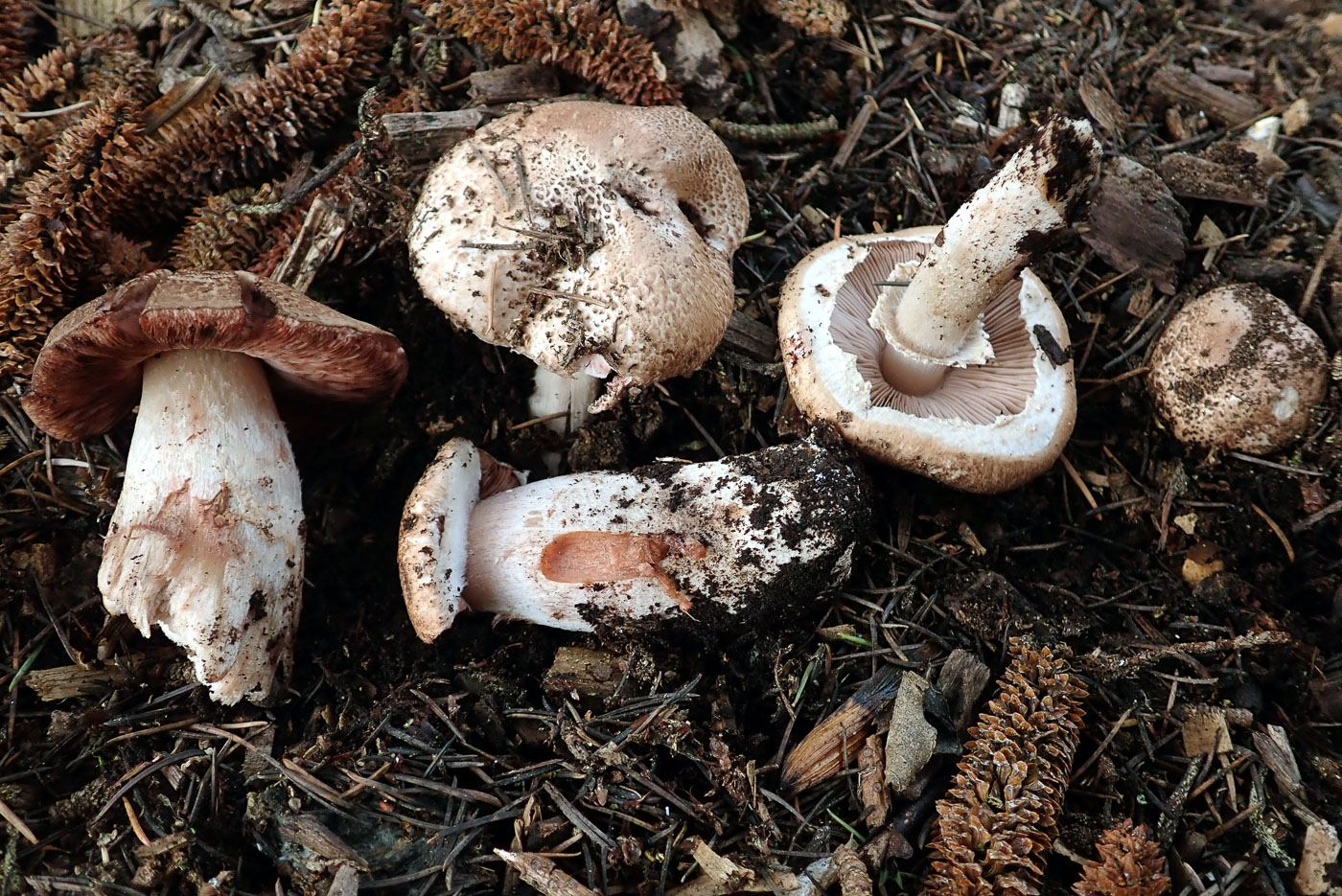
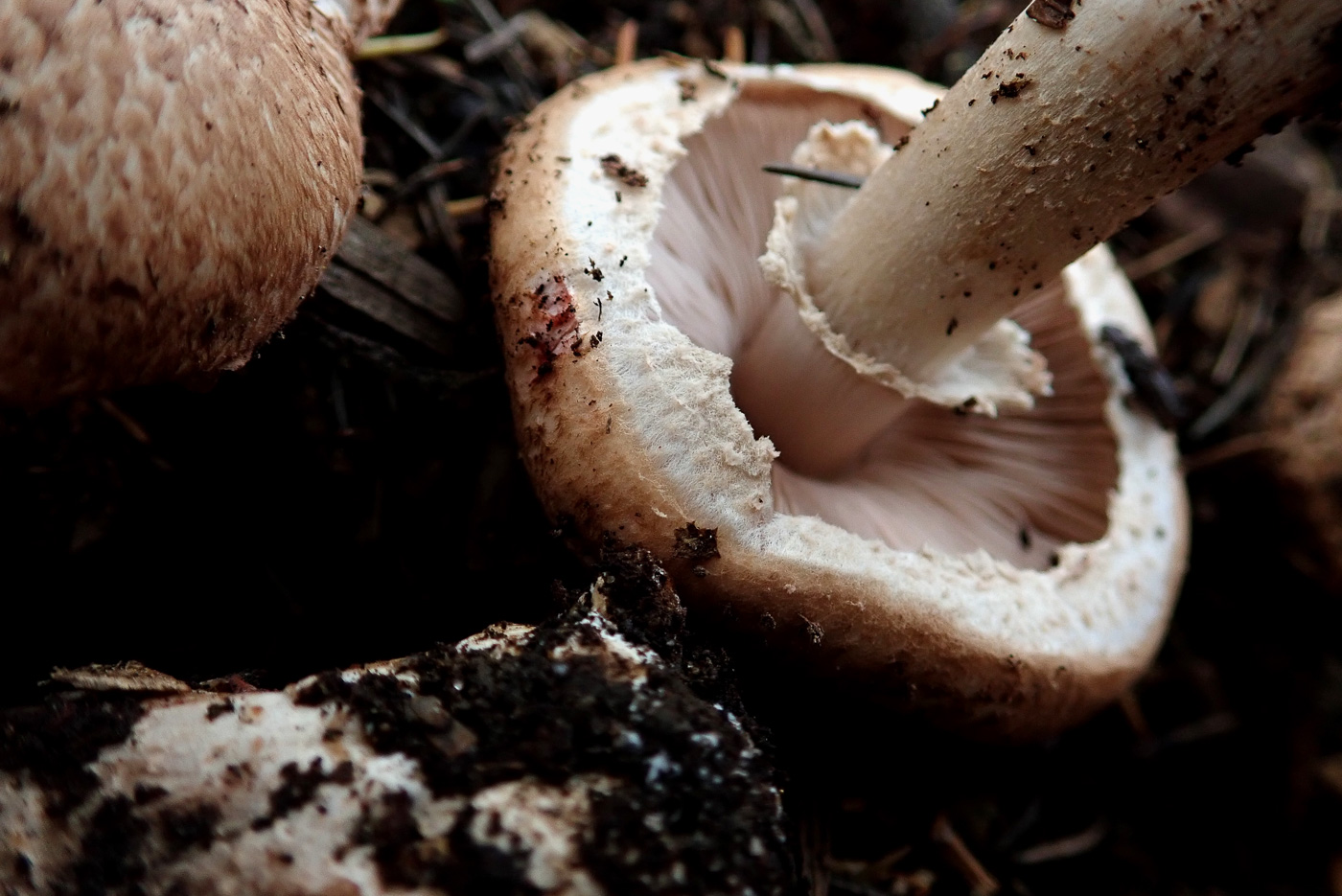 |
October 28th Agaricus sylvaticus (Blushing Wood Mushroom)
Paul and Penny C. found this species fruiting in woodchip under a large Cedar at Stoke Poges Memorial Gardens. This is one of the scaly capped members of the genus and also one which reddens strongly when damaged. It can be found in mixed woodland and also in parkland with trees (as here) but is not a grassland species. In photo 1 note the stem of the specimen in front reddening where we scratch it, also the very pink to almost red gills of the left hand specimen which had previously been kicked over. Note the stem ring and pale gills of the immature specimen in photo 2.
|
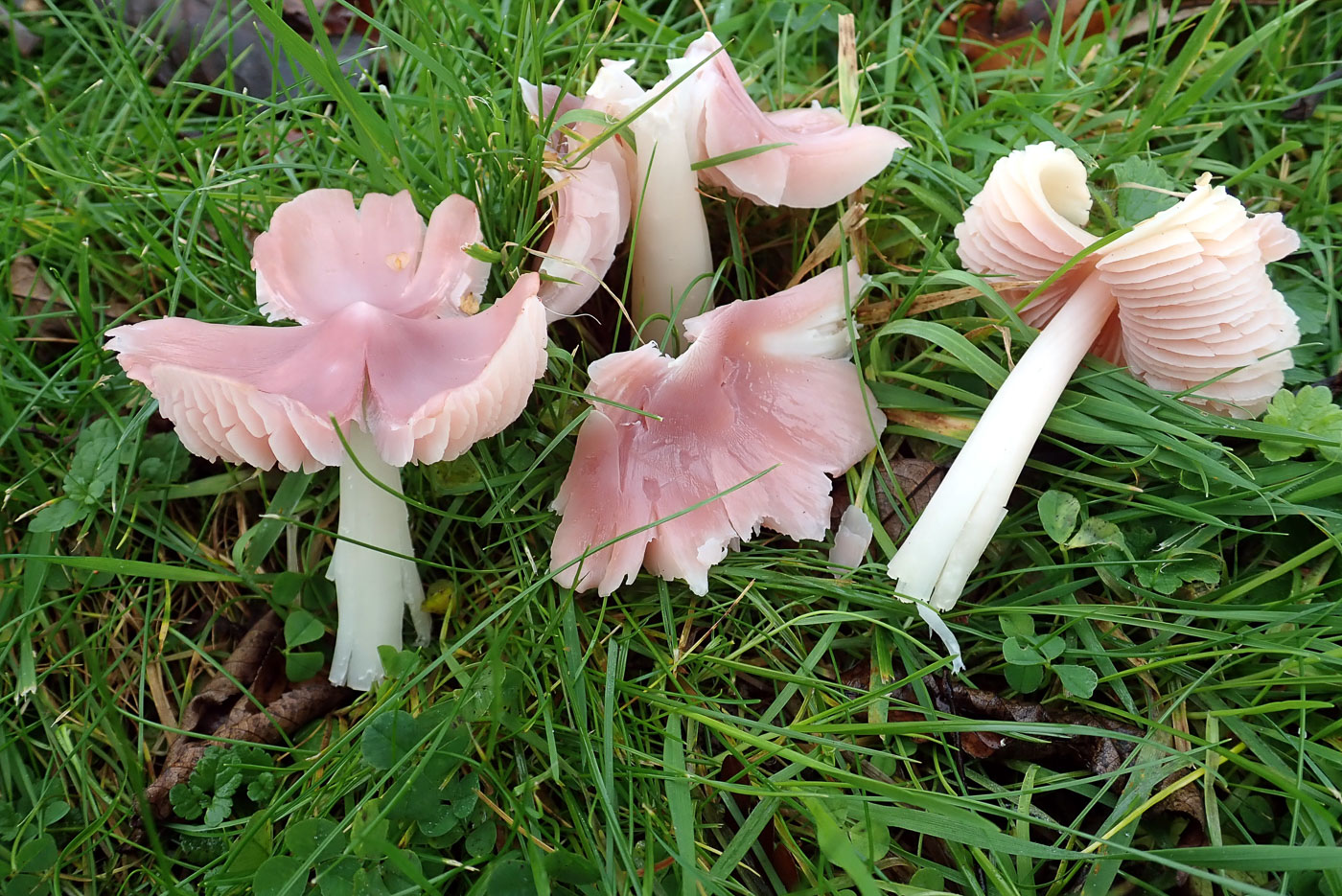
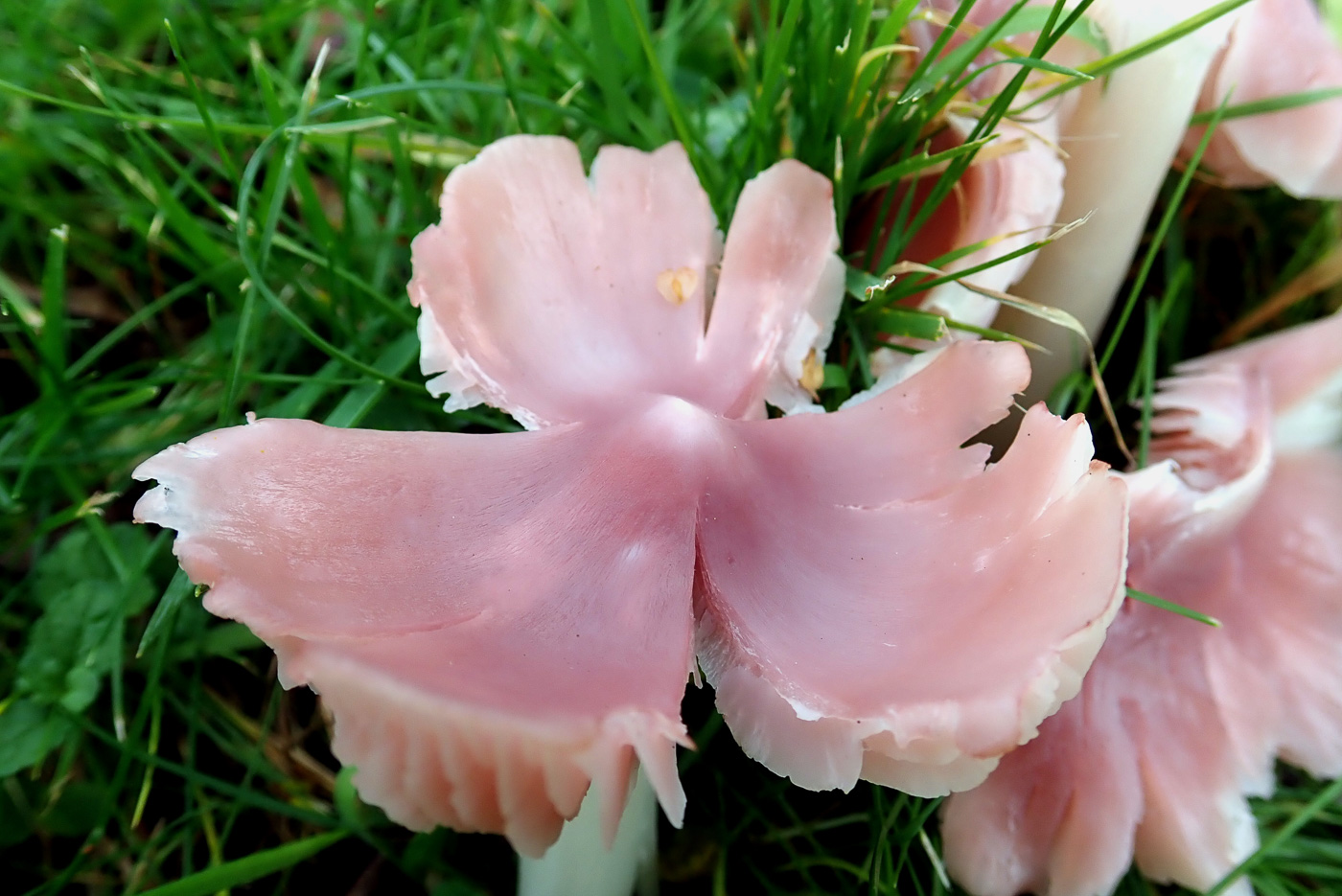 |
October 28th Hygrocybe (Porpolomopsis) calyptriformis (Pink Waxcap / Pink Ballerina)
Emily Peace (Penny C.'s granddaughter) found the first of these beauties on the lawns at Stoke Poges Memorial Gardens and soon we had enough for a collective photo. This is a very rare species in Europe though a regular fruiter in certain sites with good unimproved grassland in this country. We have recorded it at this site quite a few times before but not for the last couple of years, so it was really good to find it today. Quite a large Waxcap with a 'wow' factor, note not just the subtle colour but also the cap shape with a sharp point in the middle and when mature how the cap splits and flairs like a skirt. When young the cap is strongly conical.
|
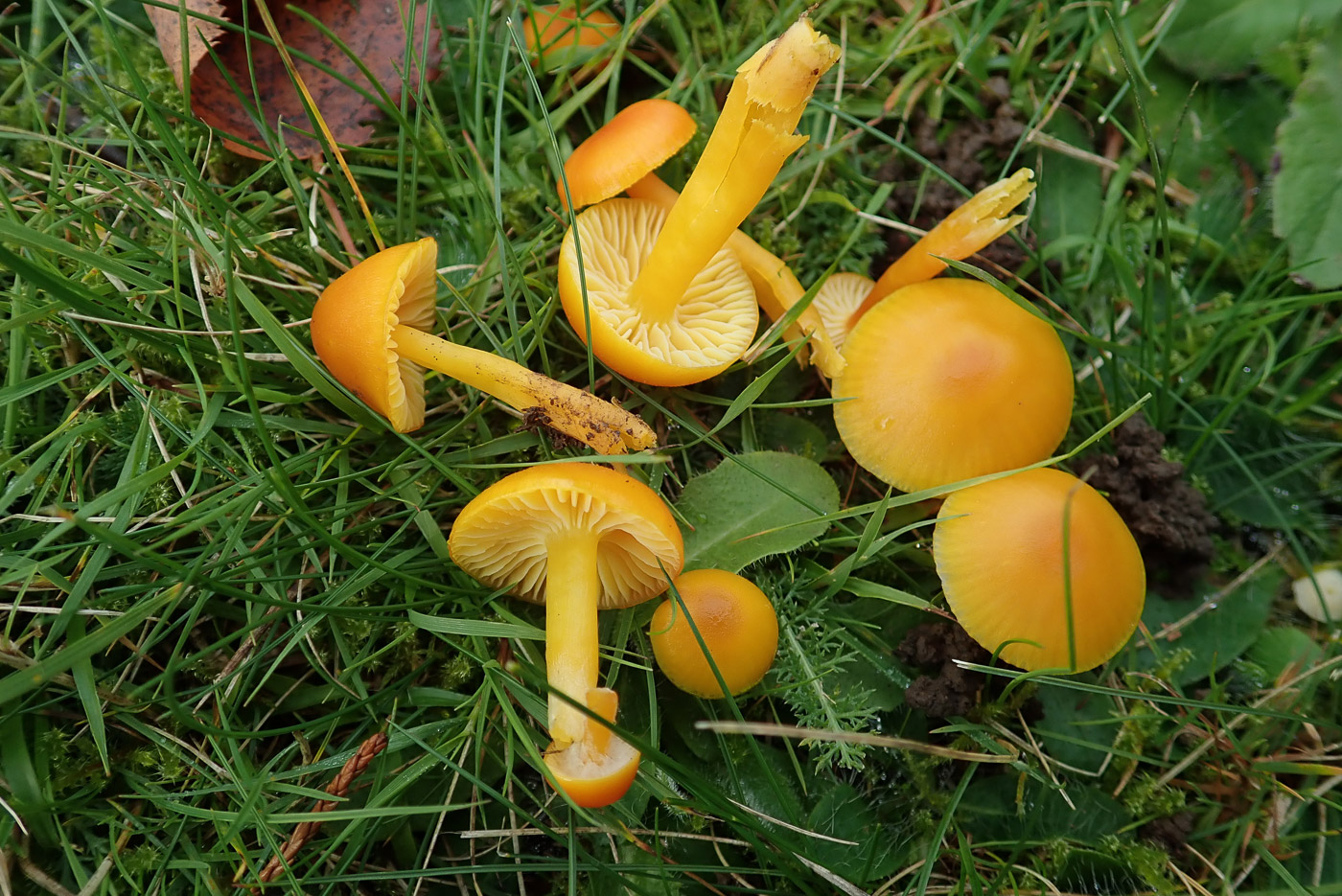
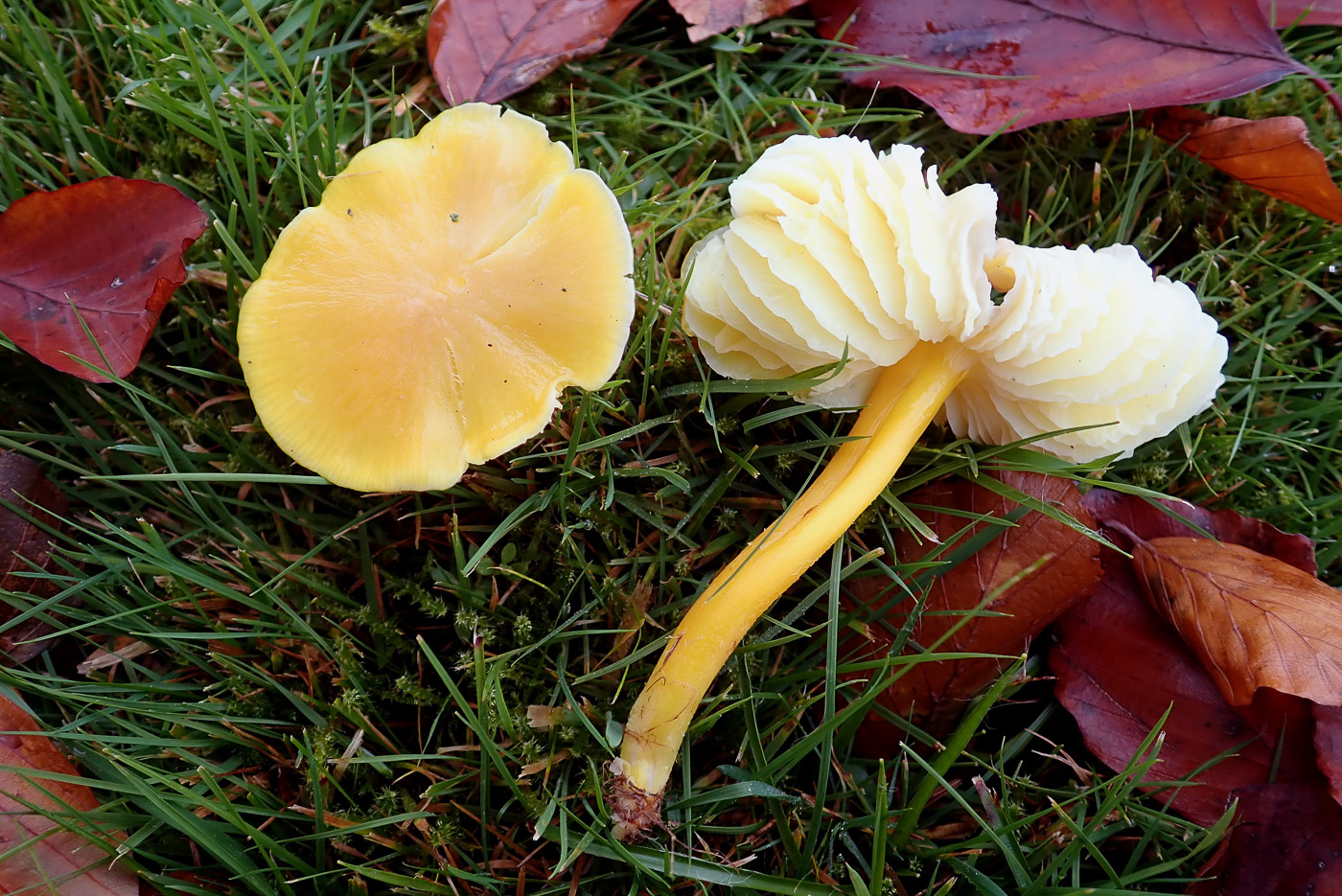 |
October 28th Hygrocybe chlorophana (Golden Waxcap)
We have a previous photo of this species dated October 03 but Paul and Penny C. were spoilt for choice today on the lawns at Stoke Poges Memorial Gardens so took the opportunity to show both young and mature collections. See previous notes for more but note the typical grooved stem and gill which are paler than the cap especially when mature.
|
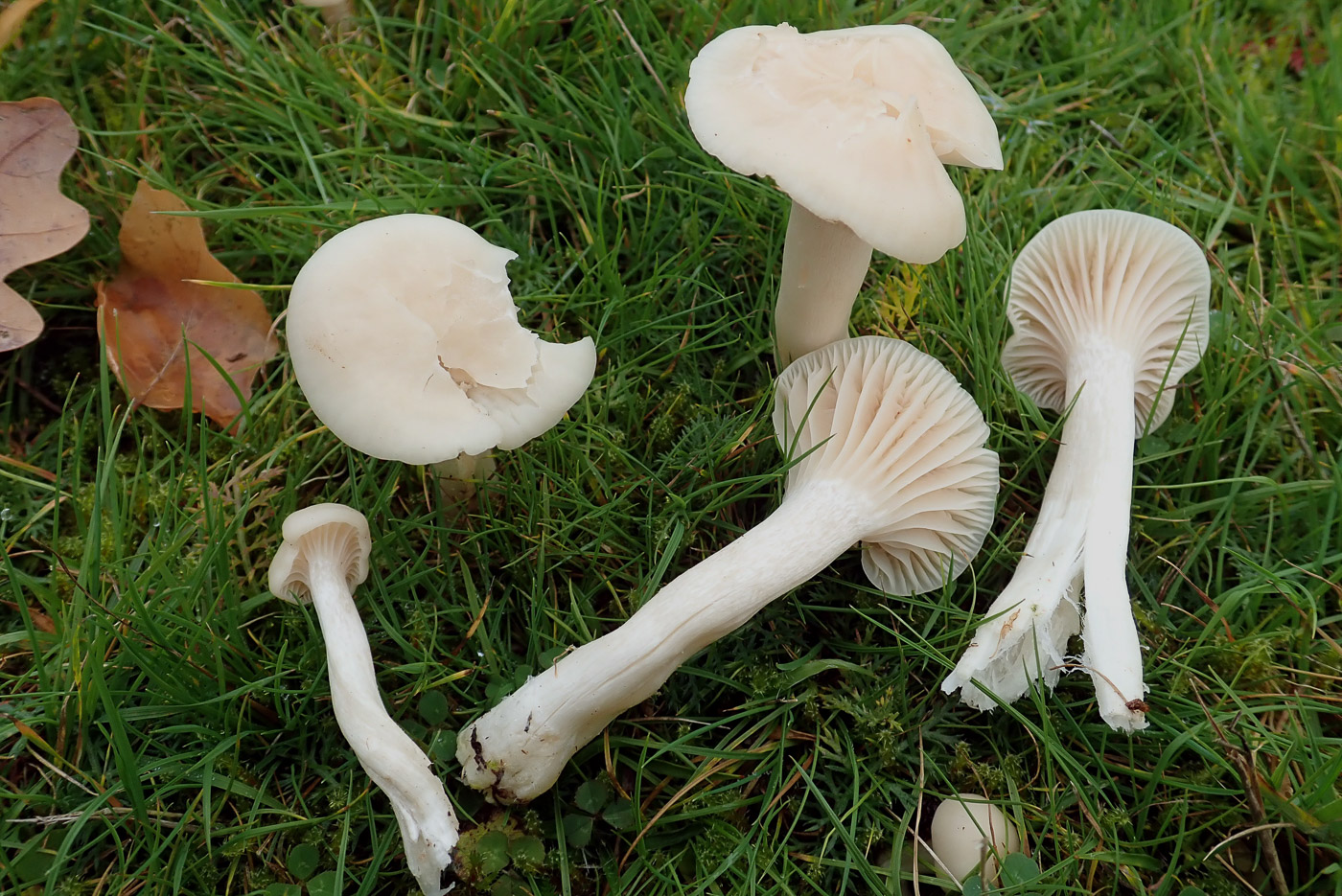 |
October 28th Hygrocybe virginea (Snowy Waxcap)
Paul and Penny C. went to Stoke Poges Memorial Gardens today (the day BFG had planned to visit prior to Covid) and were well rewarded with lots of Waxcaps on show. H. virginea is one of the commonest Waxcaps and less fussy about needing unimproved grassland to fruit in. Today it was just appearing on the lawns. Note the rather creamy white caps rather than snowy as in the common name, also the strongly decurrent widely spaced white gills.
|
October 27th 2020
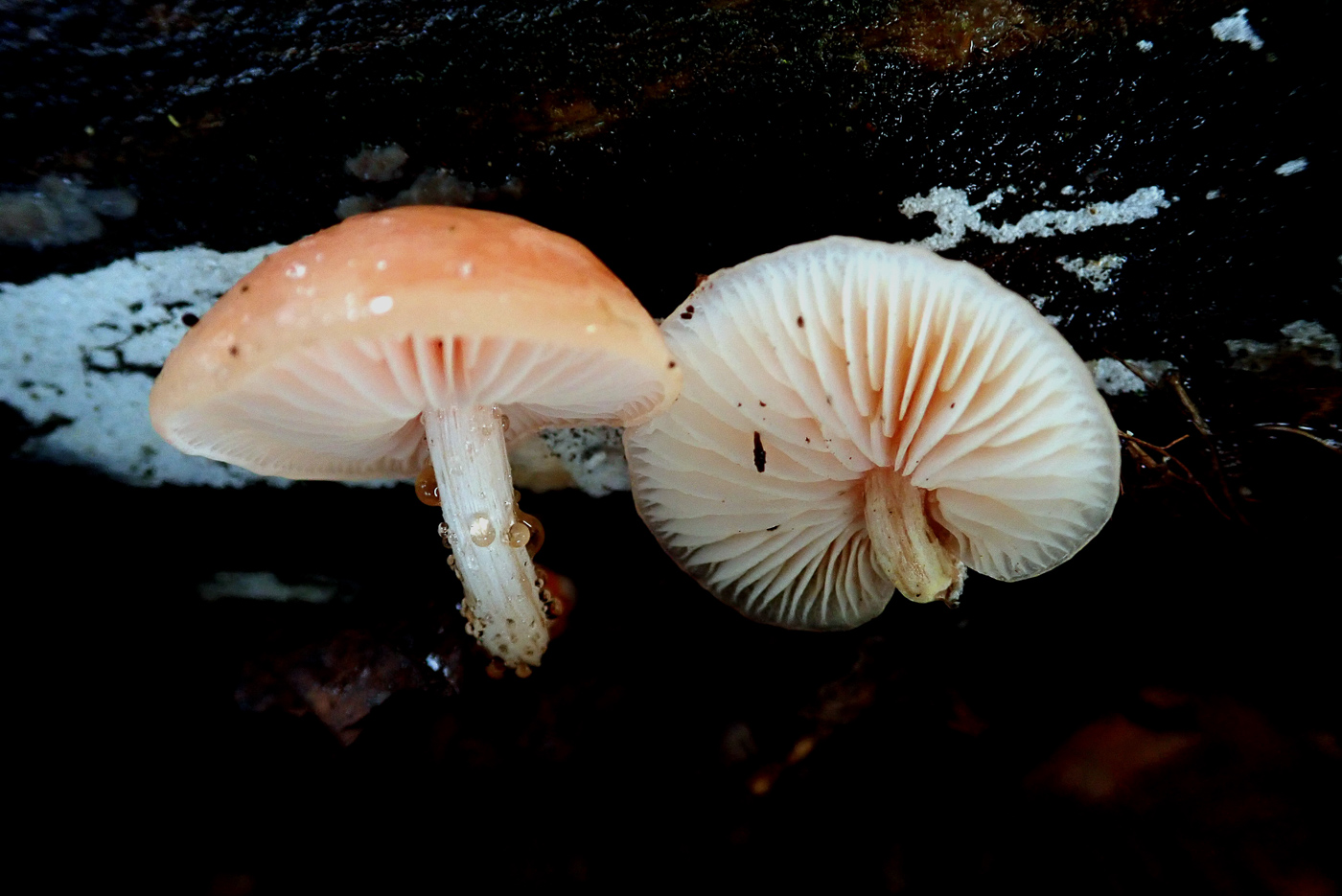
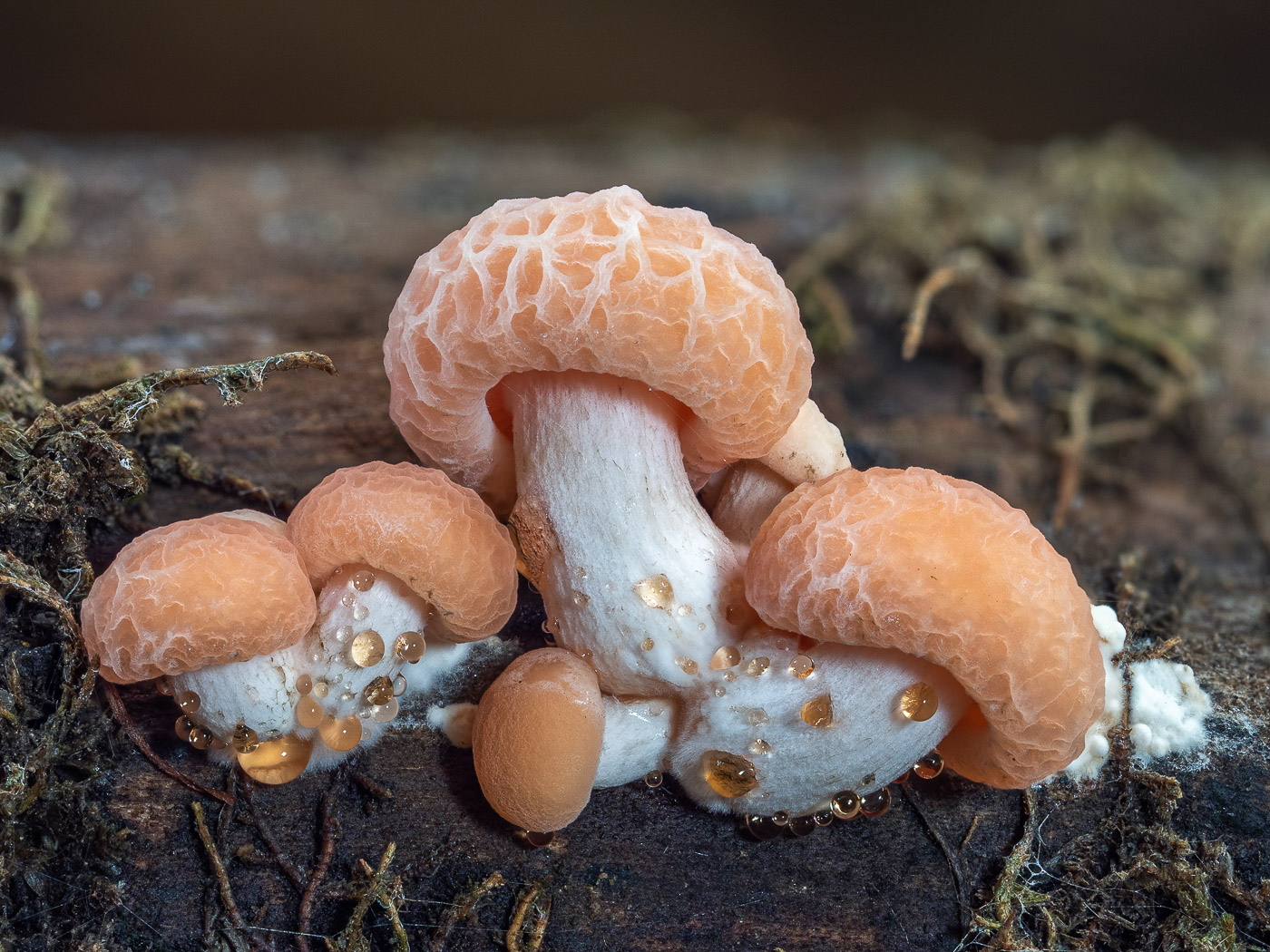 |
October 27th Rhodotus palmatus (Wrinkled Peach)
We have a beautiful photo of this species of fallen bare wood from very early on in the season, dated Sept 06, but it is still around as Penny C. discovered today in a wood near Ibstone. It is fussy about the wood it inhabits, in years gone by being host specific with Elm which would account for its rarity nowadays. However, it is happy on fallen Wych Elm but today it was somewhat surprisingly growing on what appeared to be Elder. Though bare, the branch could be identified by the presence not only of Auricularia auricula-judae but also Hyphodontia sambuci (Elder Whitewash), both species which frequent that particular wood. (The Elder Whitewash can in fact be seen on the wood in the photo.) Maybe this species is adapting and having to change its allegienca in order to survive? To support this point, the next day Barry Webb found this stunning collection (photo 2) in Mousells Wood growing on fallen Oak.
|
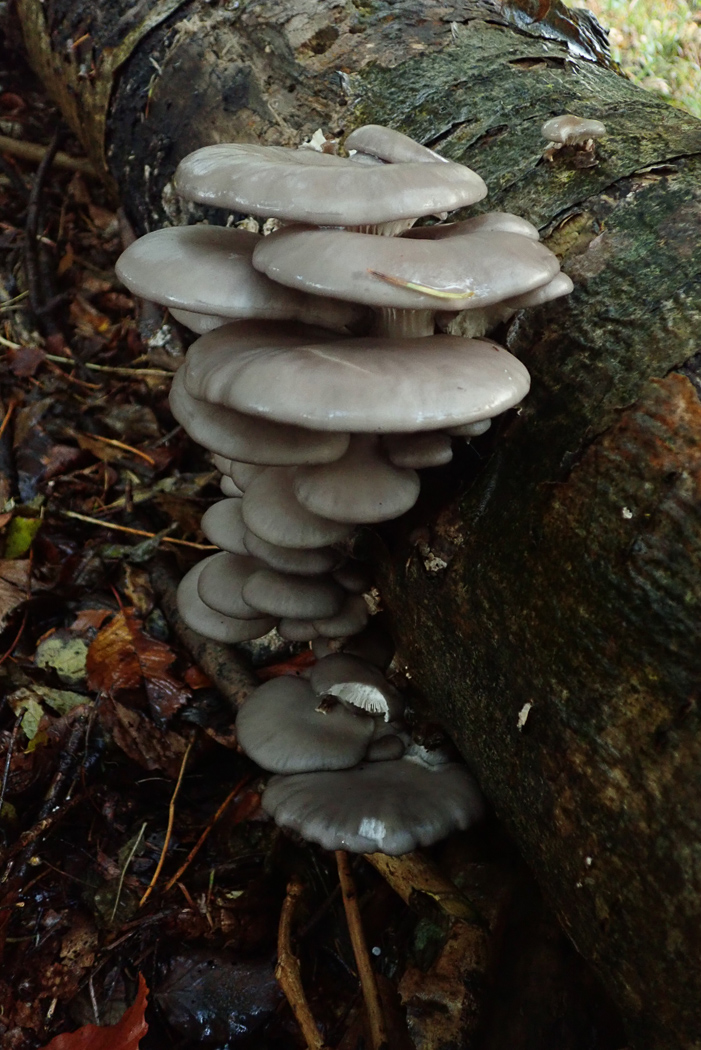
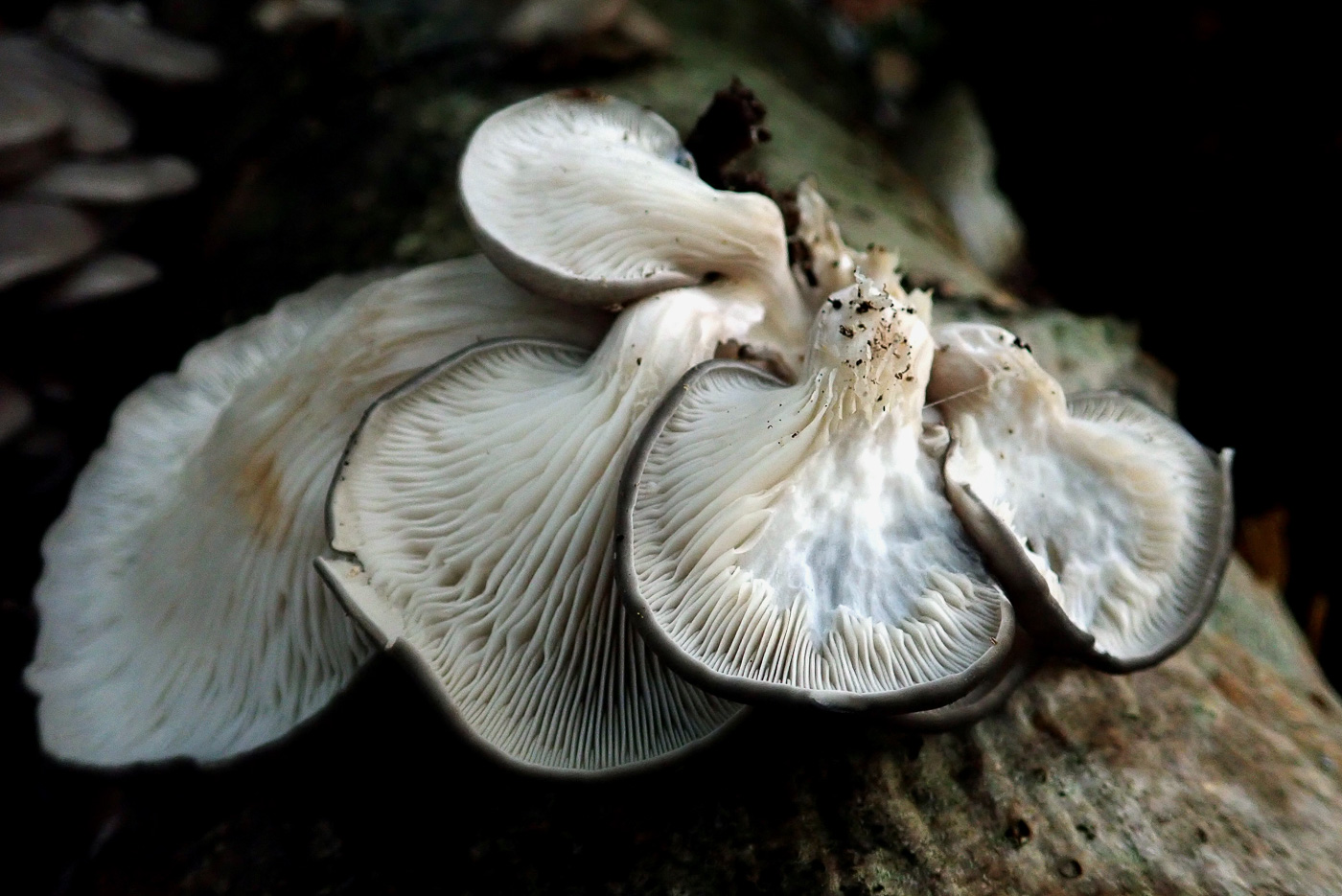 |
October 27th Pleurotus ostreatus (Oyster Mushroom)
We have a photo of this species dated Sept 21st where Penny comments on the very variable cap colour often met with. Today she found a beautifully formed but much darker cluster fruiting on fallen Birch, evenly grey with no cream of beige tints. So she felt it was worth sharing the photo here because the darker forms of the species often lead people to be confused and wonder if they have something different.
|
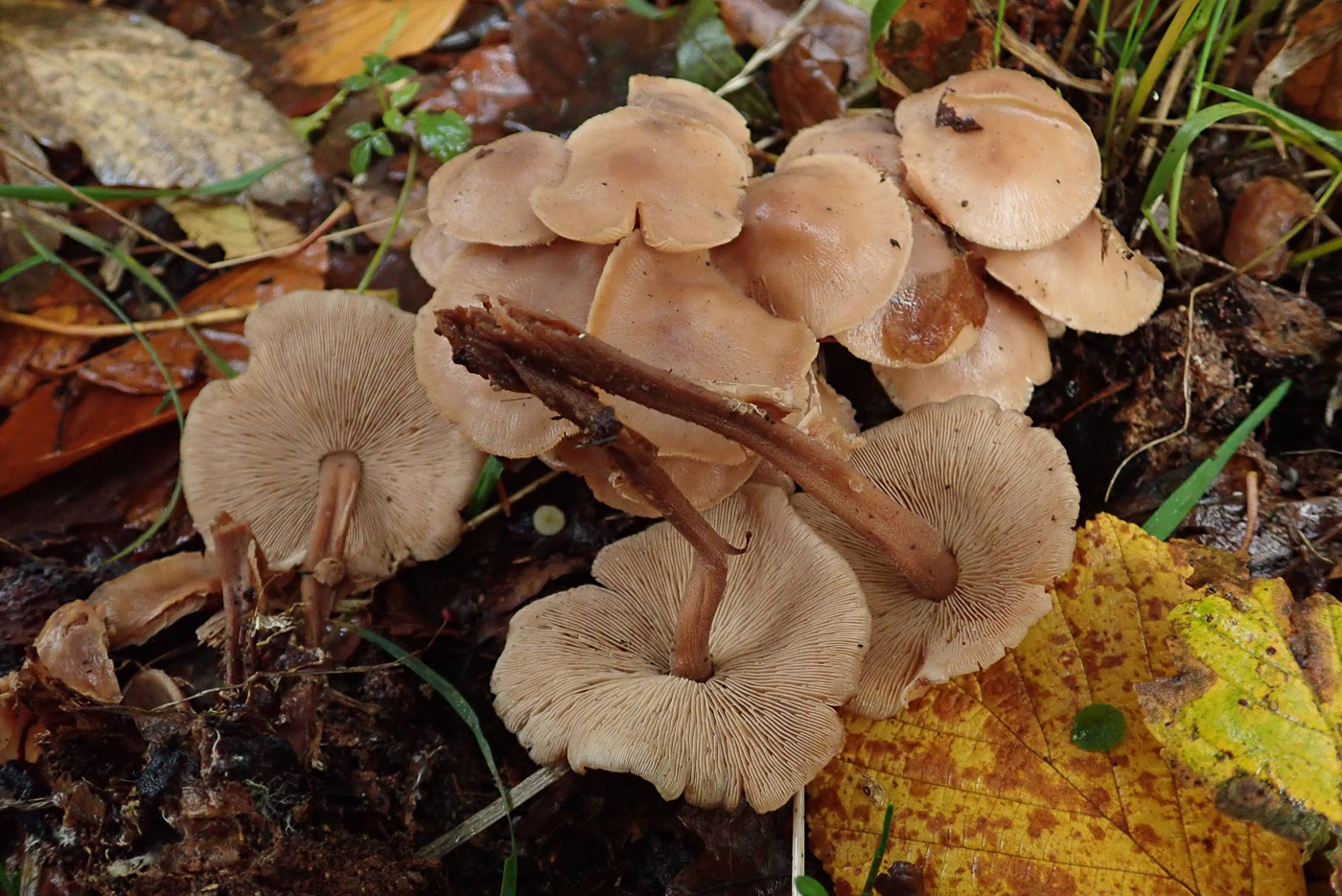
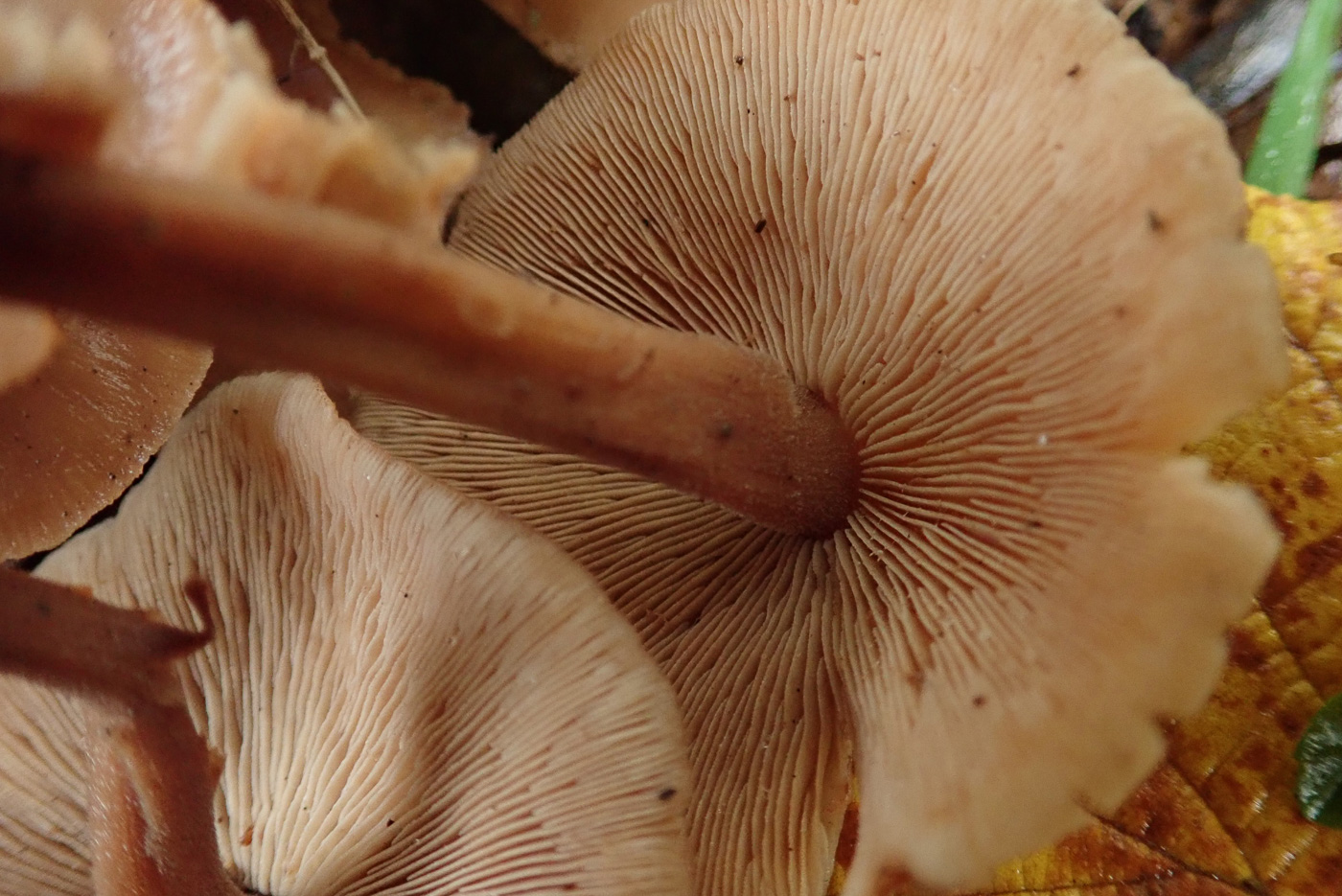 |
October 27th Gymnopus confluens (Clustered Toughshank)
Penny C. was surprised by the large cap size of this cluster of mature fruit bodies growing in Oak litter near Ibstone. Our previous photo (see Oct 01) is of much younger paler specimens with almost white gills, whereas today the caps were about 4 cm across and the gills were pinky-beige though still very crowded - a diagnostic feature of this species. Stems are typically grooved and finely velutinous (best seen with a handlens), not to be confused with the stem of G. erythropus which is also reddish below but is always shiny and smooth.
|
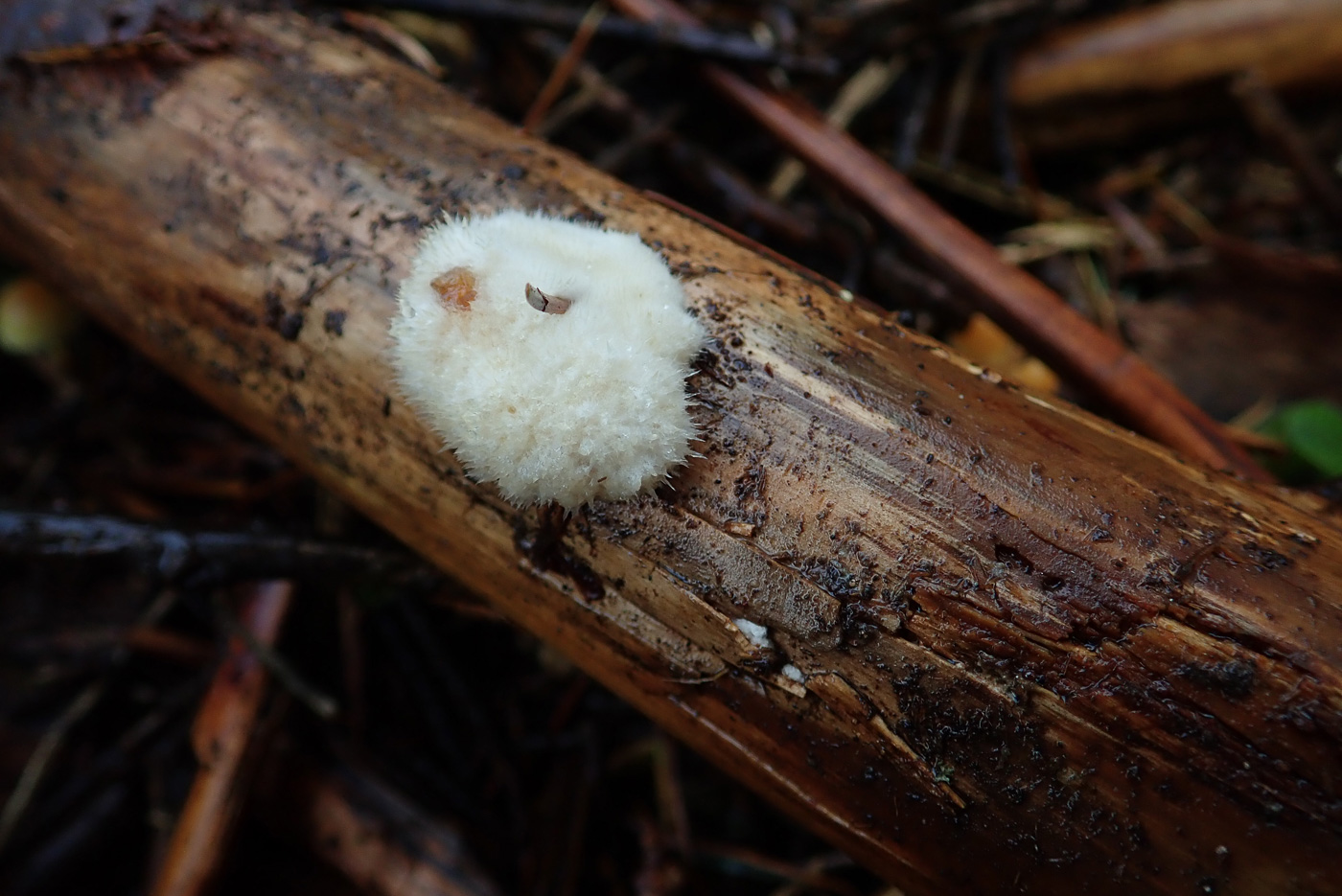
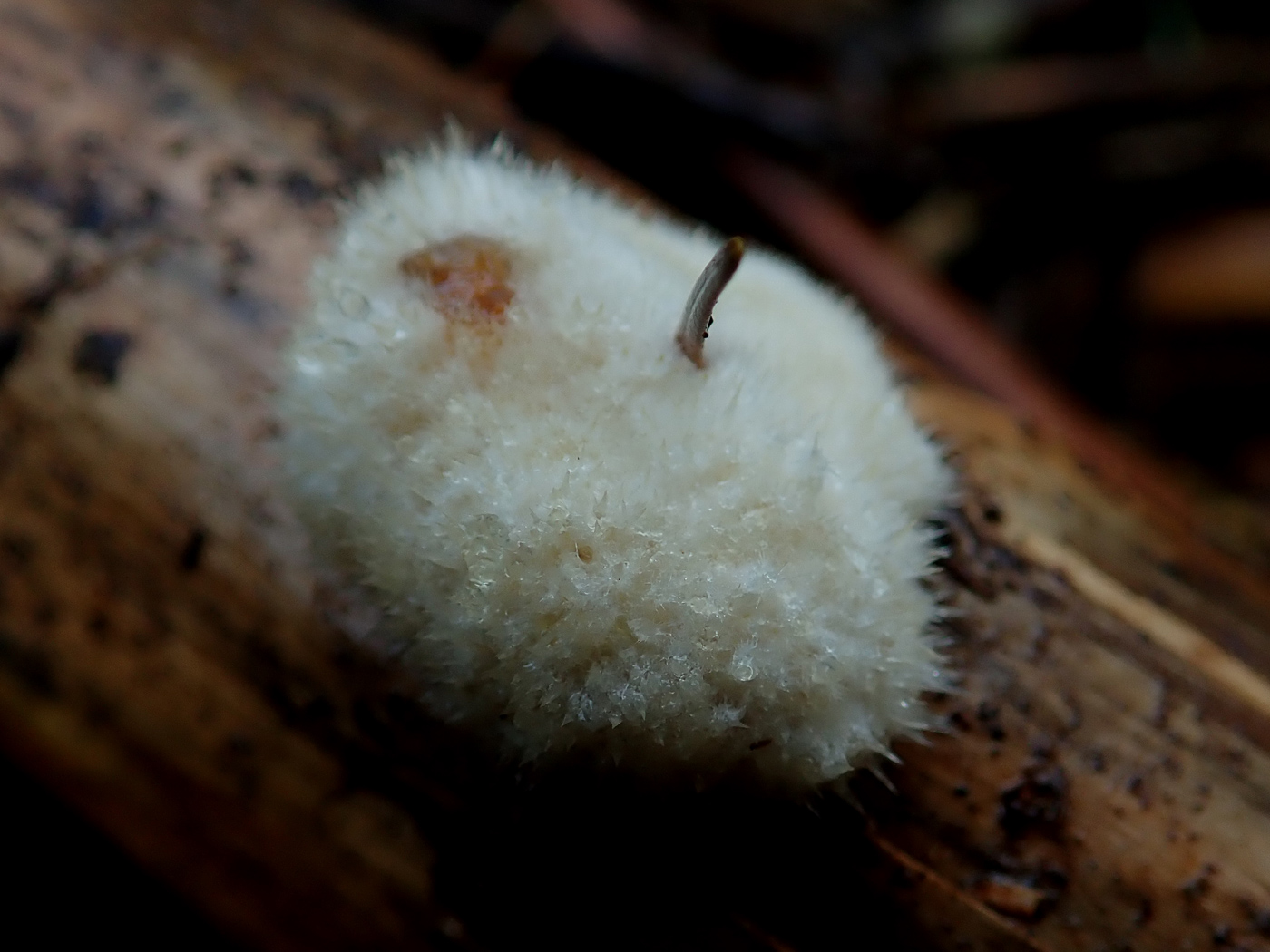 |
October 27th Postia ptychogaster (Powderpuff Bracket)
Penny C. noticed this single fluffy mound on a fallen Spruce branch near Ibstone. This is an early sterile stage of a bracket which can quite often be found on stumps and fallen bare wood of conifer and these fluffy round mounds can get to a good size and sometimes have oozing droplets. Today's was small, only about 3 cms across.
|
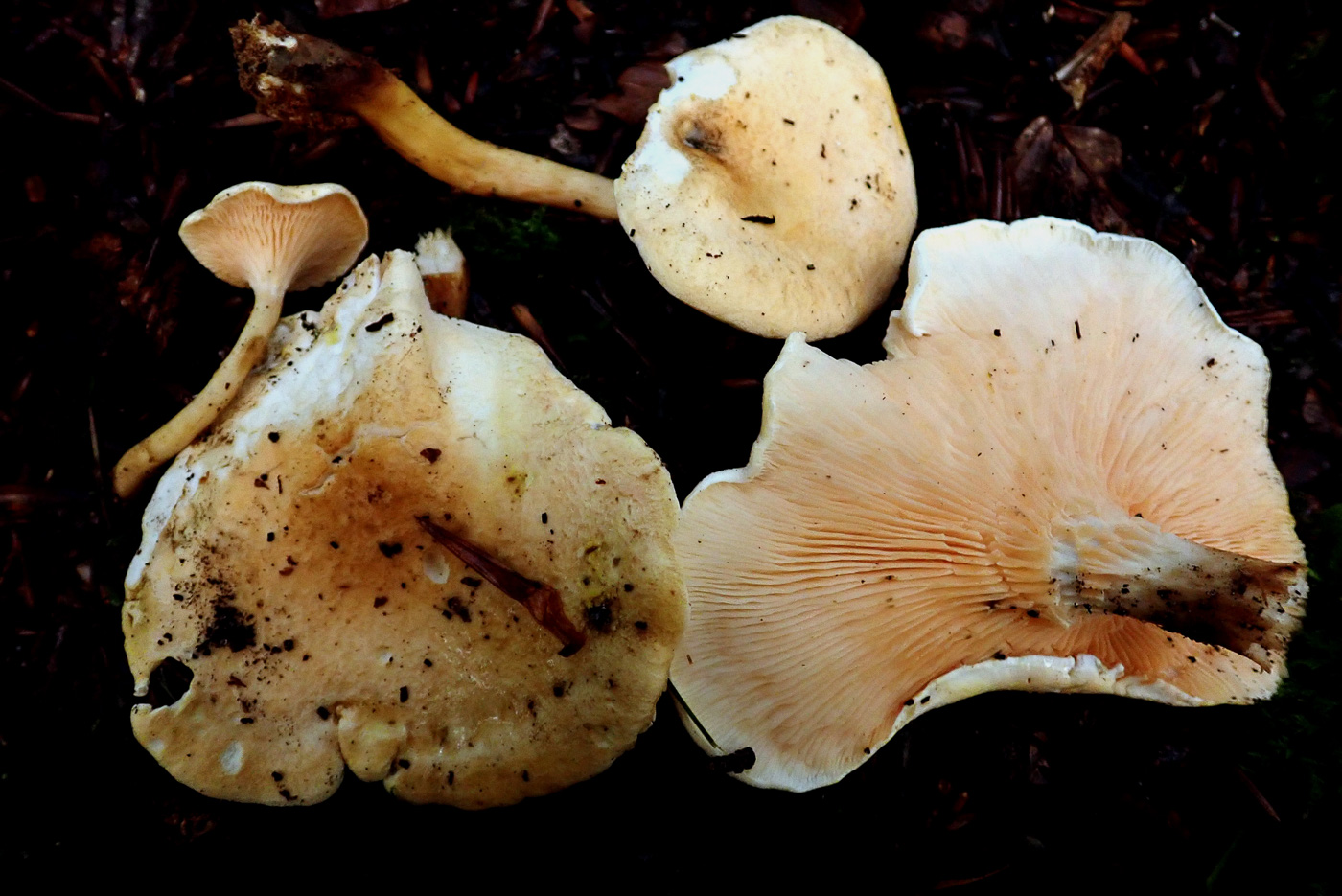
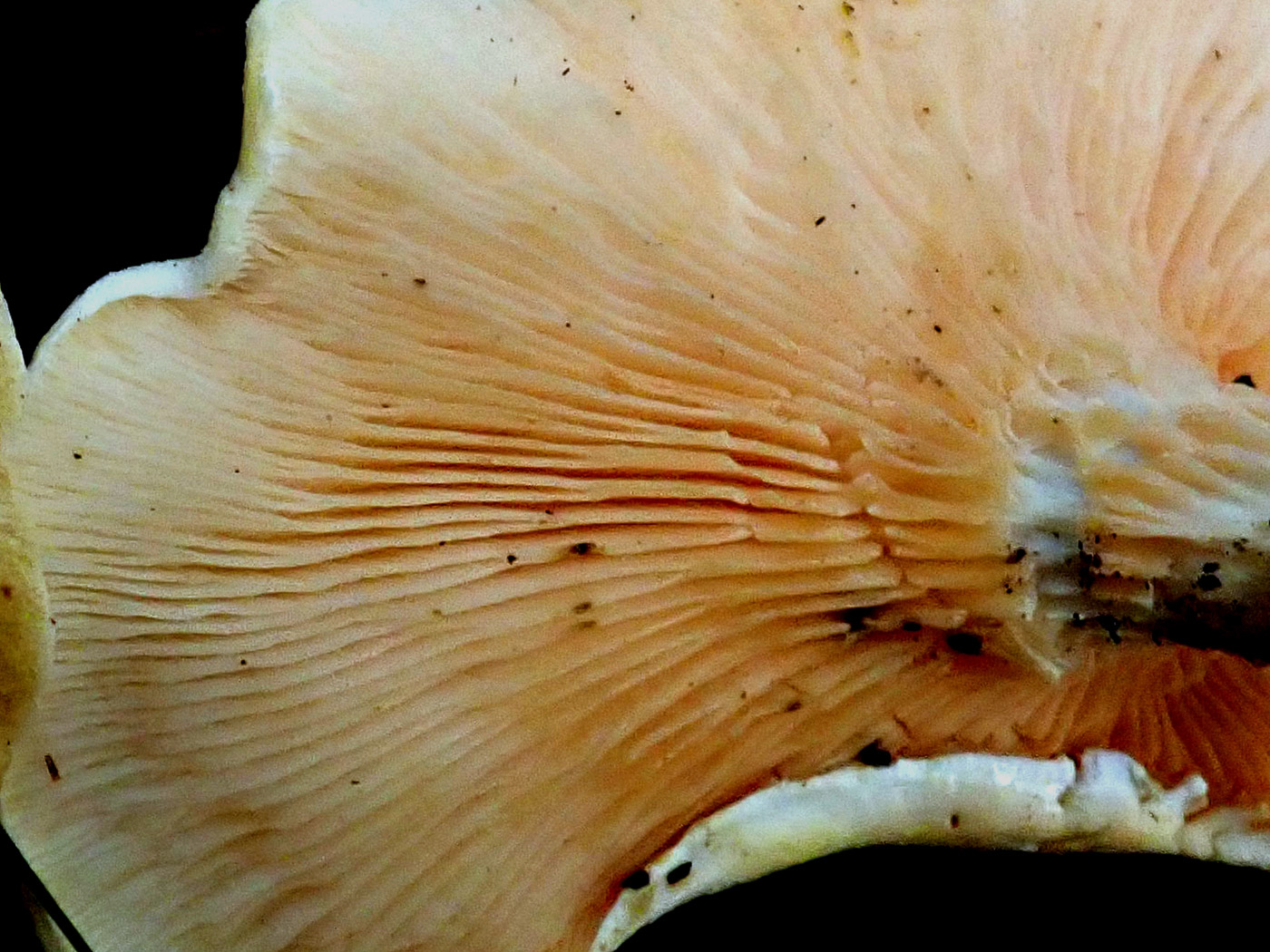 |
October 27th Hygrophoropsis aurantiaca (False Chanterelle)
It seems remarkable that this normally common species is only just making an appearance. It was found in a Spruce plantation near Ibstone by Penny C. though as the fruitbodies were growing out from under a felled Oak trunk they are somewhat atypically shaped. They do at least show the deeply decurrent and forking gills (see photo 2) but are rather pale both above and below. Hopefully better examples will be forthcoming. This is a species of heathland and grassland, often where there's bracken, and can be under both conifers and deciduous trees.
|
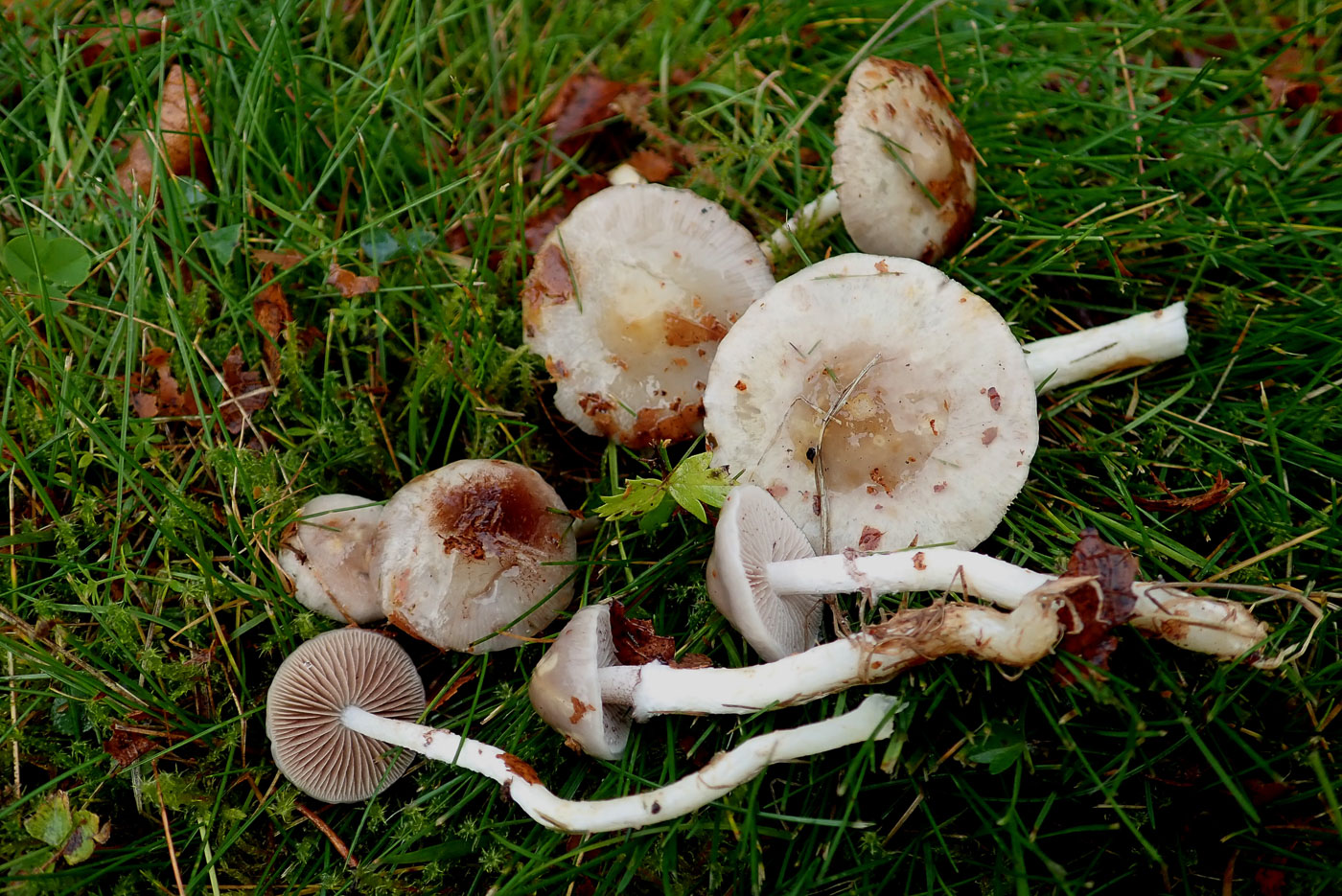
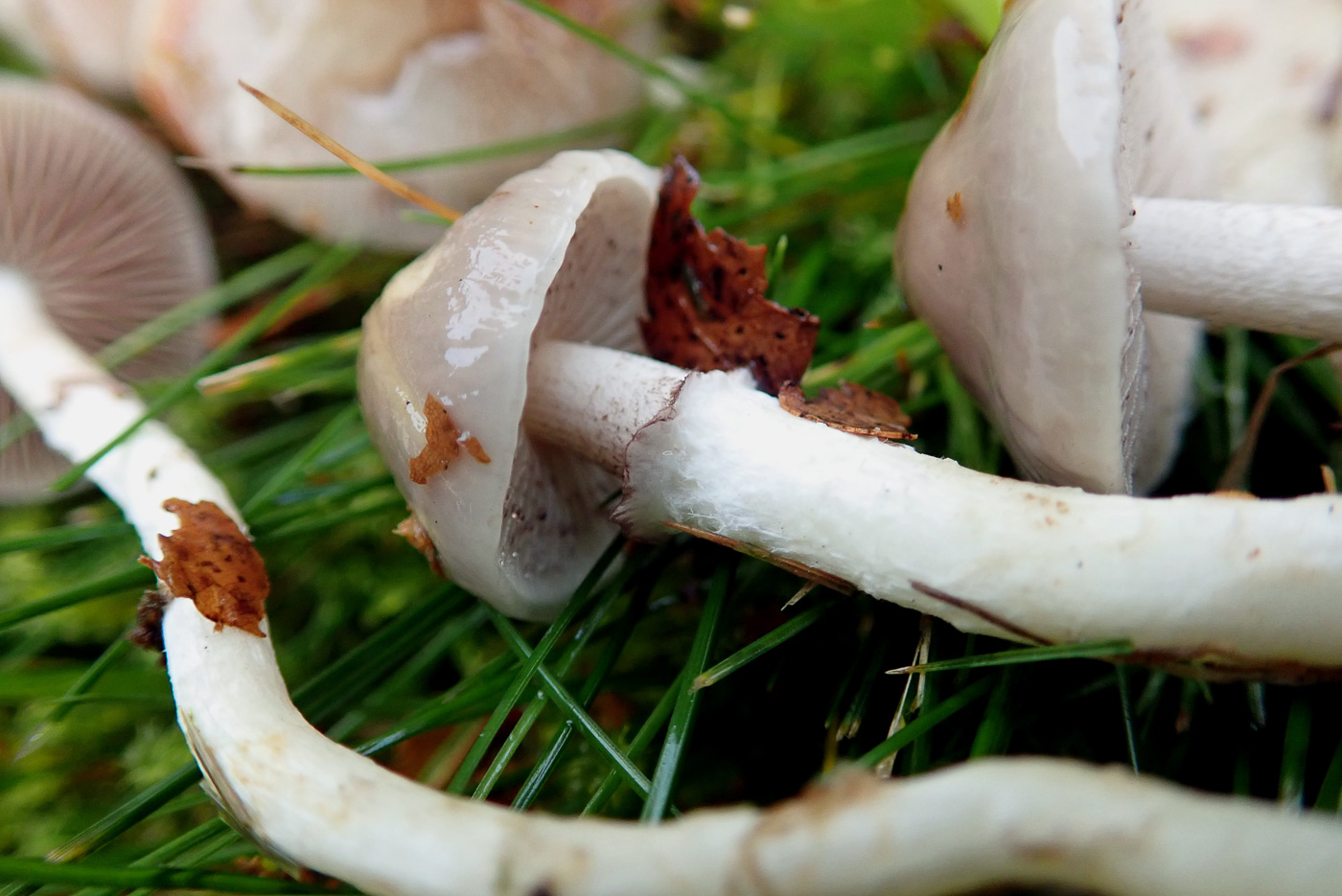
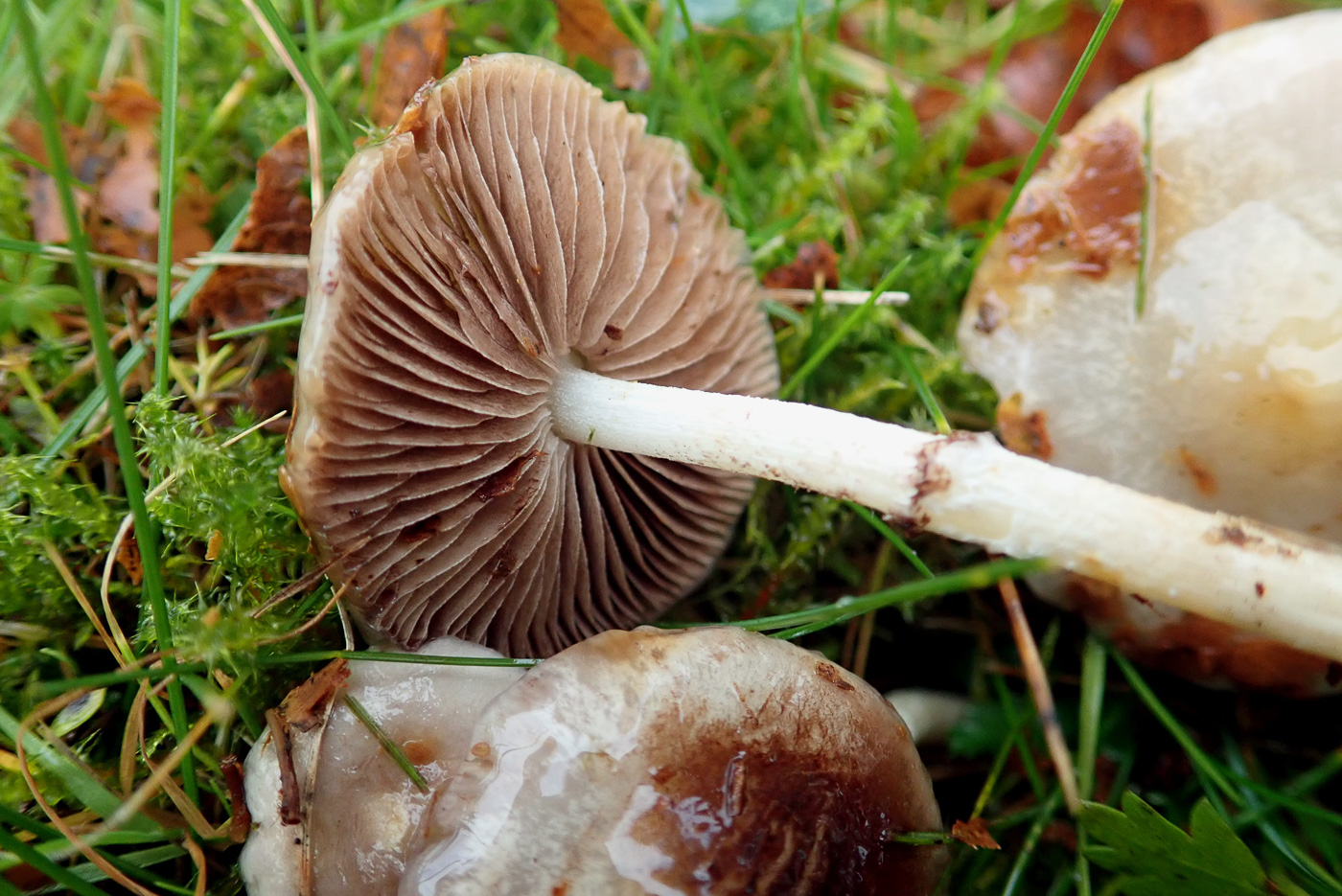 |
October 27th Stropharia inuncta (Smoky Roundhead)
In Fingest Churchyard Penny C. found this quite unusual Stropharia, one which lacks the beautiful blue-green colours of the closely related S. caerulea (see photo dated Oct 14) which was also in the churchyard today but so faded after rain that it was almost as dull grey as our S. inuncta. The species is recognised by its sticky grey cap which is slightly darker and browner in the raised centre, the gills start out pale but end up dark brown like the spores, the stem is white and smooth apart from the distinct membranous ascending ring which becomes coloured as the spores drop and adhere to it. Photos 2 and 3 show these features quite well.
|
October 26th 2020
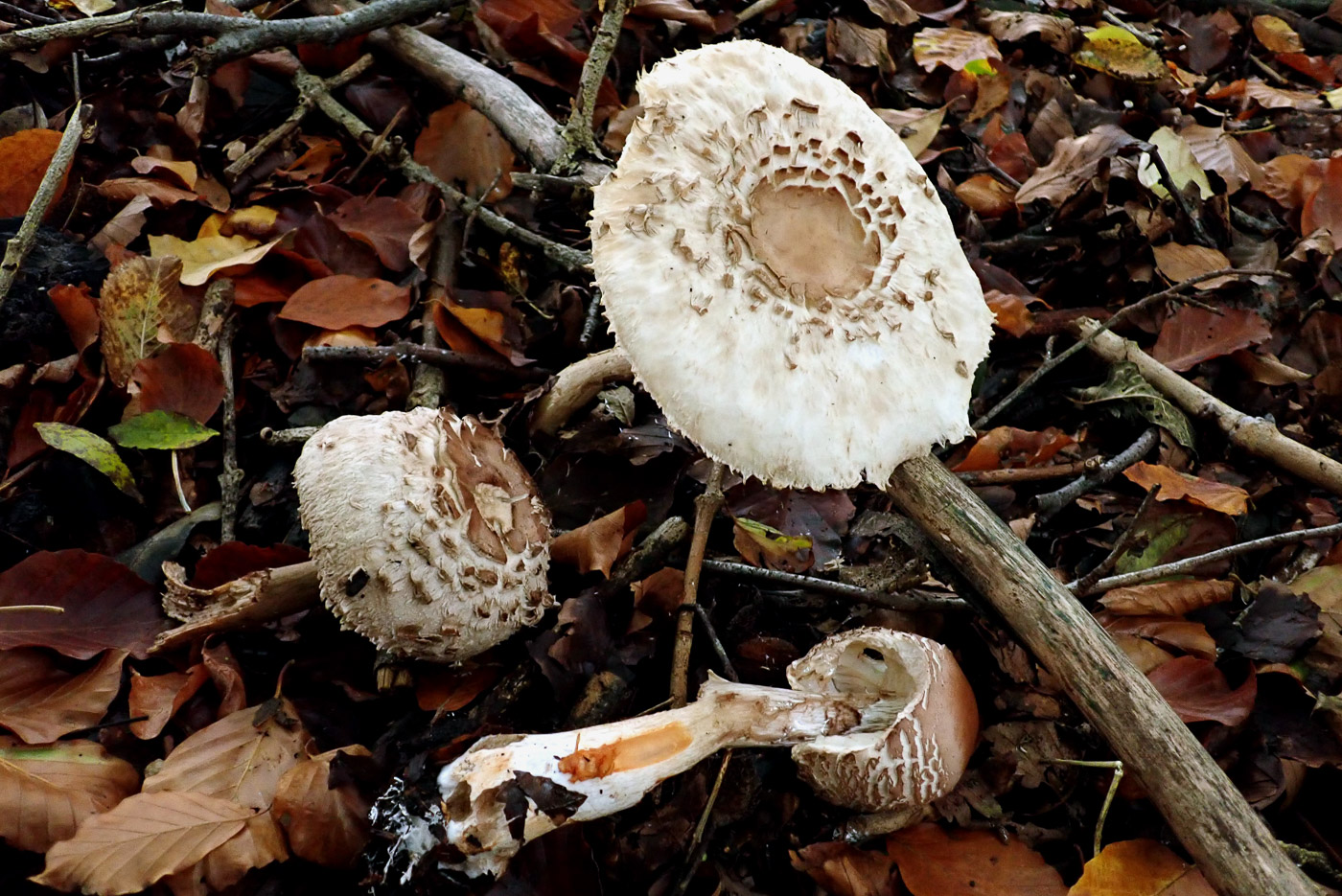 |
October 26th Chlorophyllum rhacodes (Shaggy Parasol)
We already have images of immature specimens of this species (dated Oct 16) but Paul and Penny C. found some with more mature caps in Mousells Wood which show the typical brown scales on a paler background. The three caps here also show how the scales are gradually formed from the initial smooth brown surface as the cap expands. The largest one here was about 15 cms across but caps can get much bigger than this. Note the diagnostic orange staining on the young stem where we scratched it. (Note also that the largest cap - exactly as found - is being supported by a stick which is not its stem!)
|
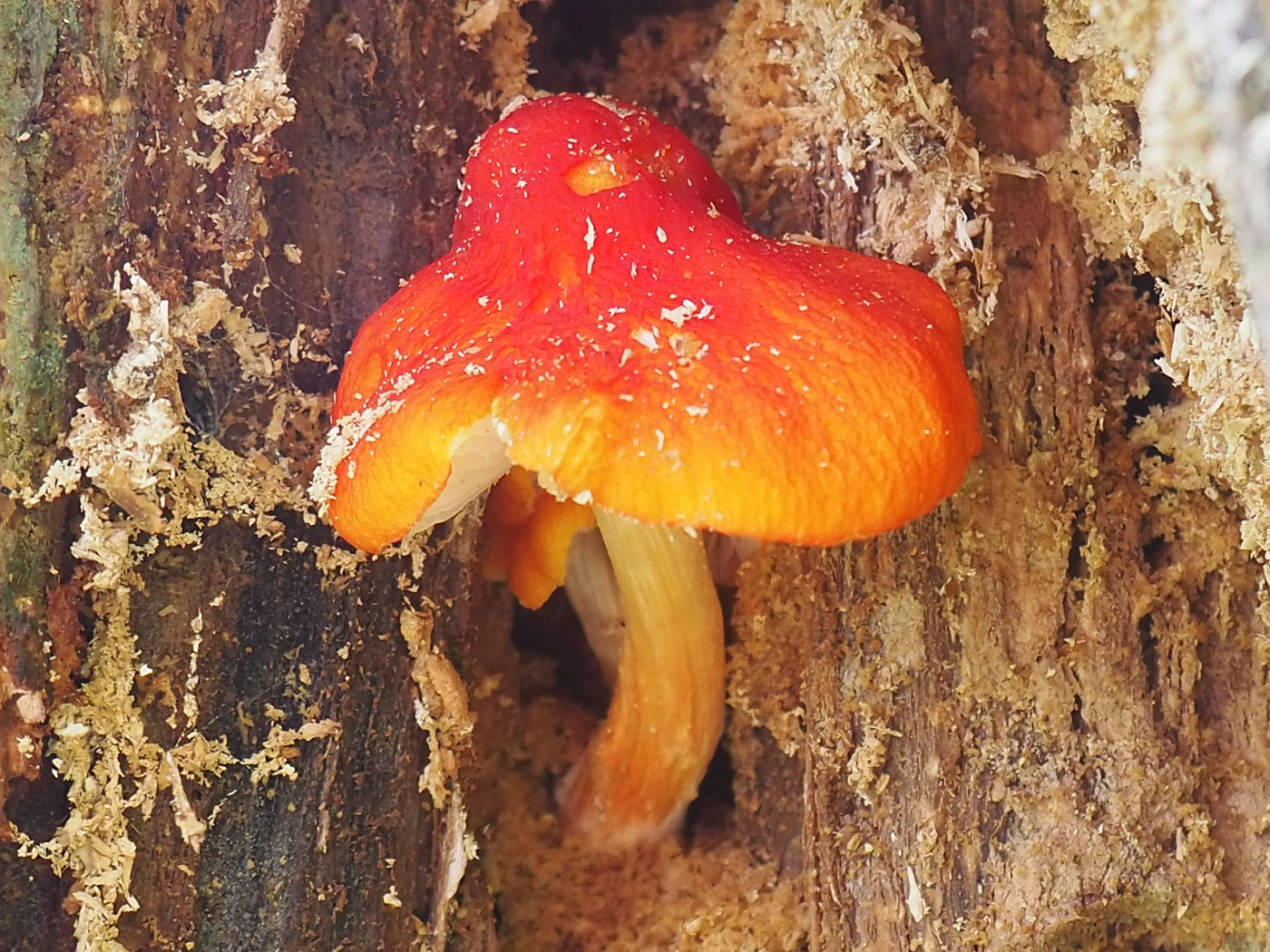 |
October 26th Pluteus aurantiorugosus (Flame Shield)
John Catterson found this stunning and rare species of Shield on a dying Horse Chestnut tree in Hughendon Park where he remembered it fruiting last year. The genus Pluteus is quite a large one, always growing on wood or a woody substrate, always with pink gills which are free and most species are some shade of dull brown. Today's species is somewhat startlingly in contrast and is one which Penny would love to find for herself, never having done so! We have extremely few county records.
|
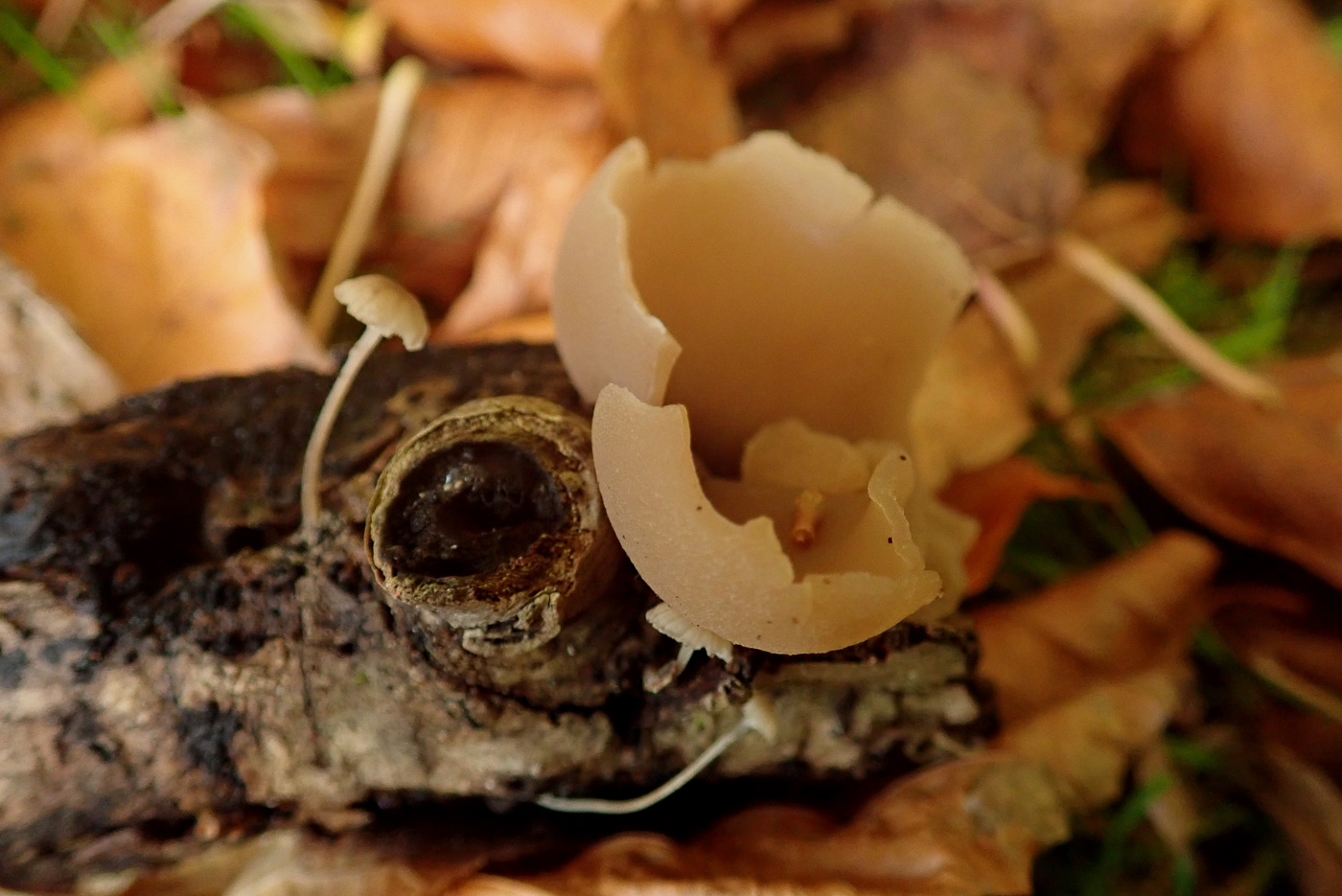
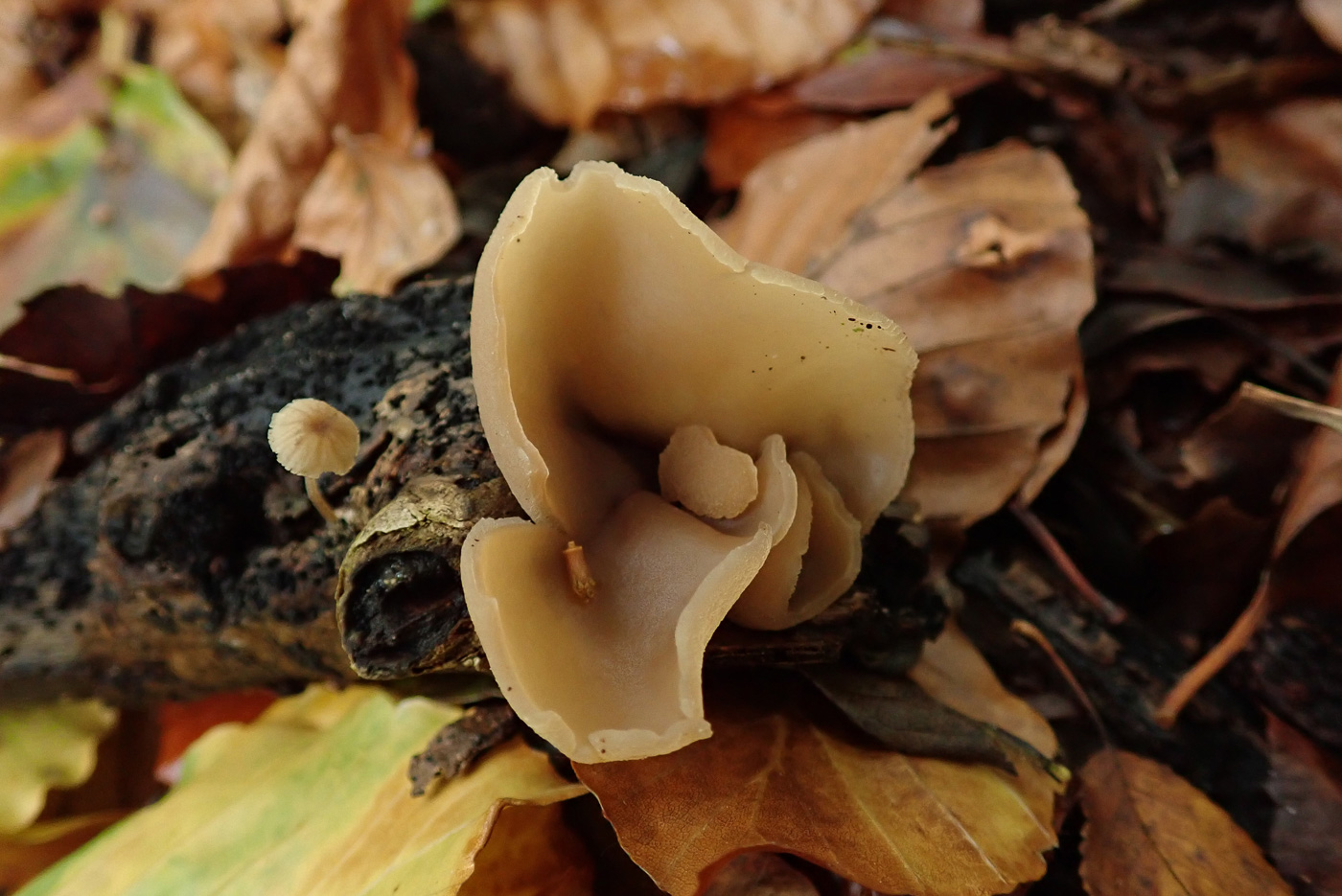 |
October 26th Peziza arvernensis (a species of Cup with no common name) 
Penny C. found this cup - our first species of Peziza - on a Beech stick in Mousells Wood fruiting together with three small Bonnets: Mycena speirea (see also photo dated Oct 14 for more on that species). It measured about 3 cms across and was taken home to work on as this is not a genus one can name in the field. One first has to make sure that it's a Peziza and not the very similar genus Otidea (see earlier photos for examples of that genus) and then wade through a lengthy key. There are several lookalikes of this species which frequent Beechwoods so the spore size and ornamentation is critical.
|
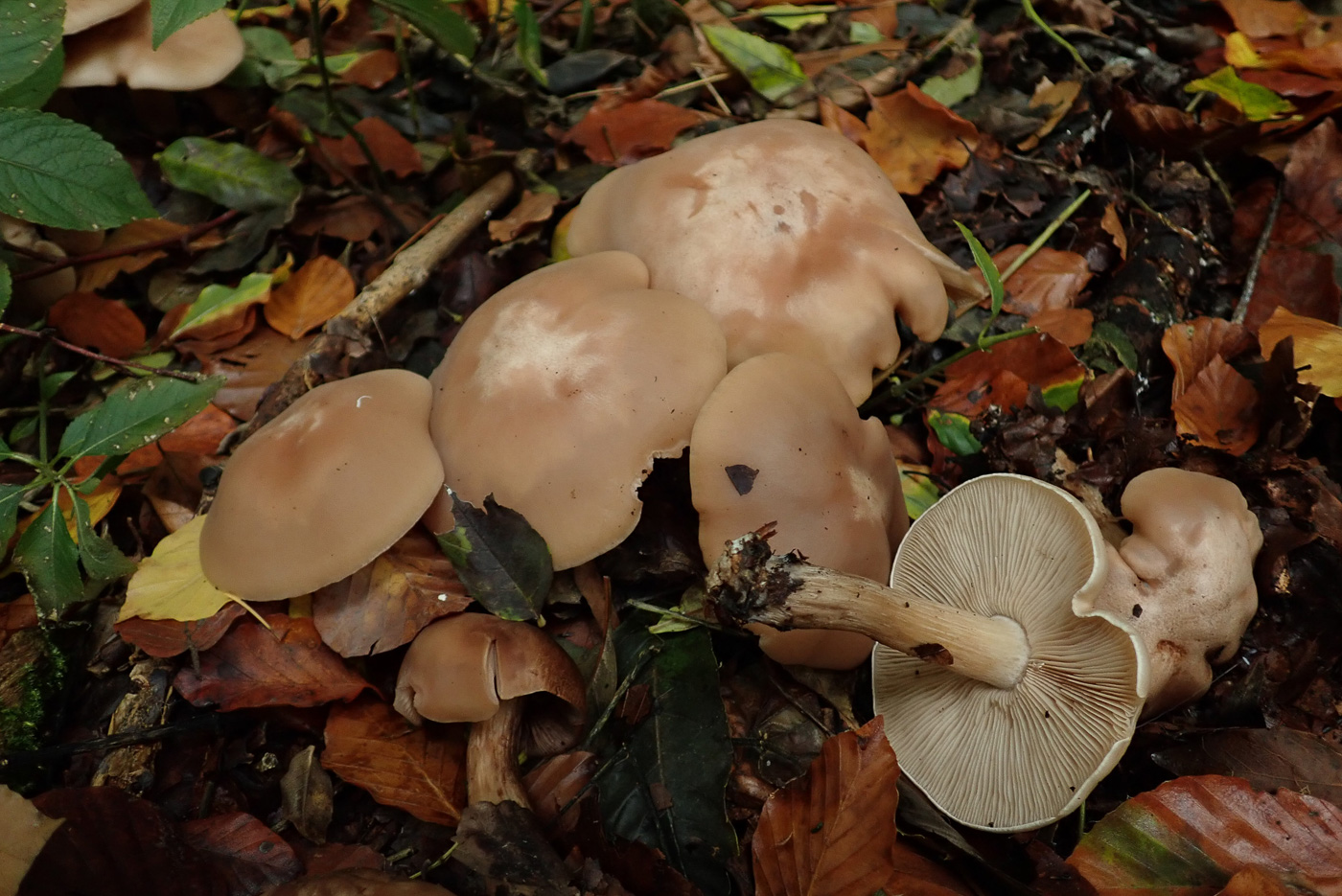
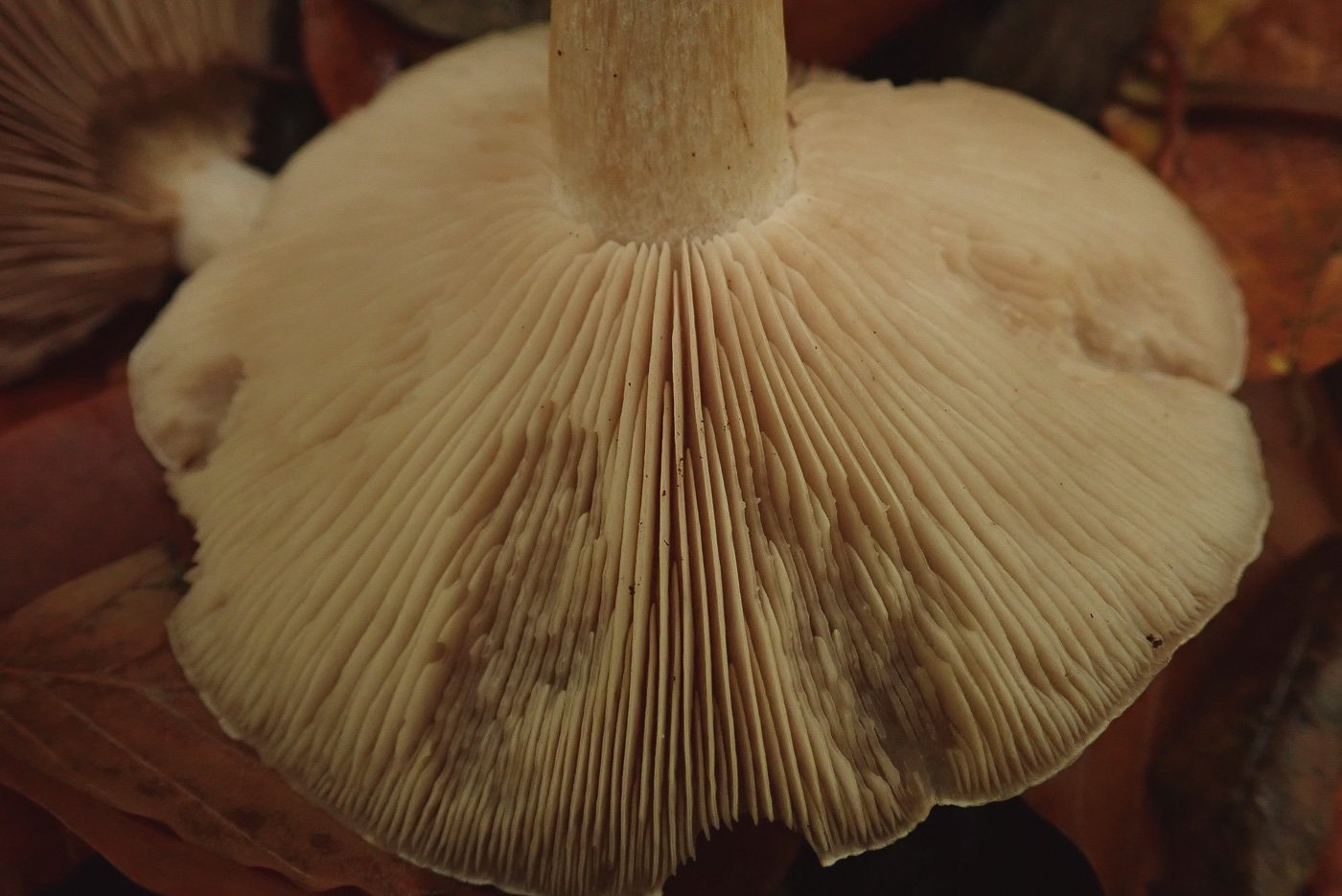 |
October 26th Lepista irina (Flowery Blewit)
Paul C. found several collections of this chunky rather nondescript pale brown mushroom fruiting in Beech litter in Mousells Wood (photo Penny C.). Not that common a species, its main redeeming feature is its pleasant sweet flowery smell. Penny at first thought it was a species of Melanoleuca because of the crowded gills and broad central umbo, probably M. cognata which has cap and gills this colour. Once collected, however, its smell eliminated that genus and she remembered Geoffrey Kibby finding and naming the species on a visit here a few years back.
|
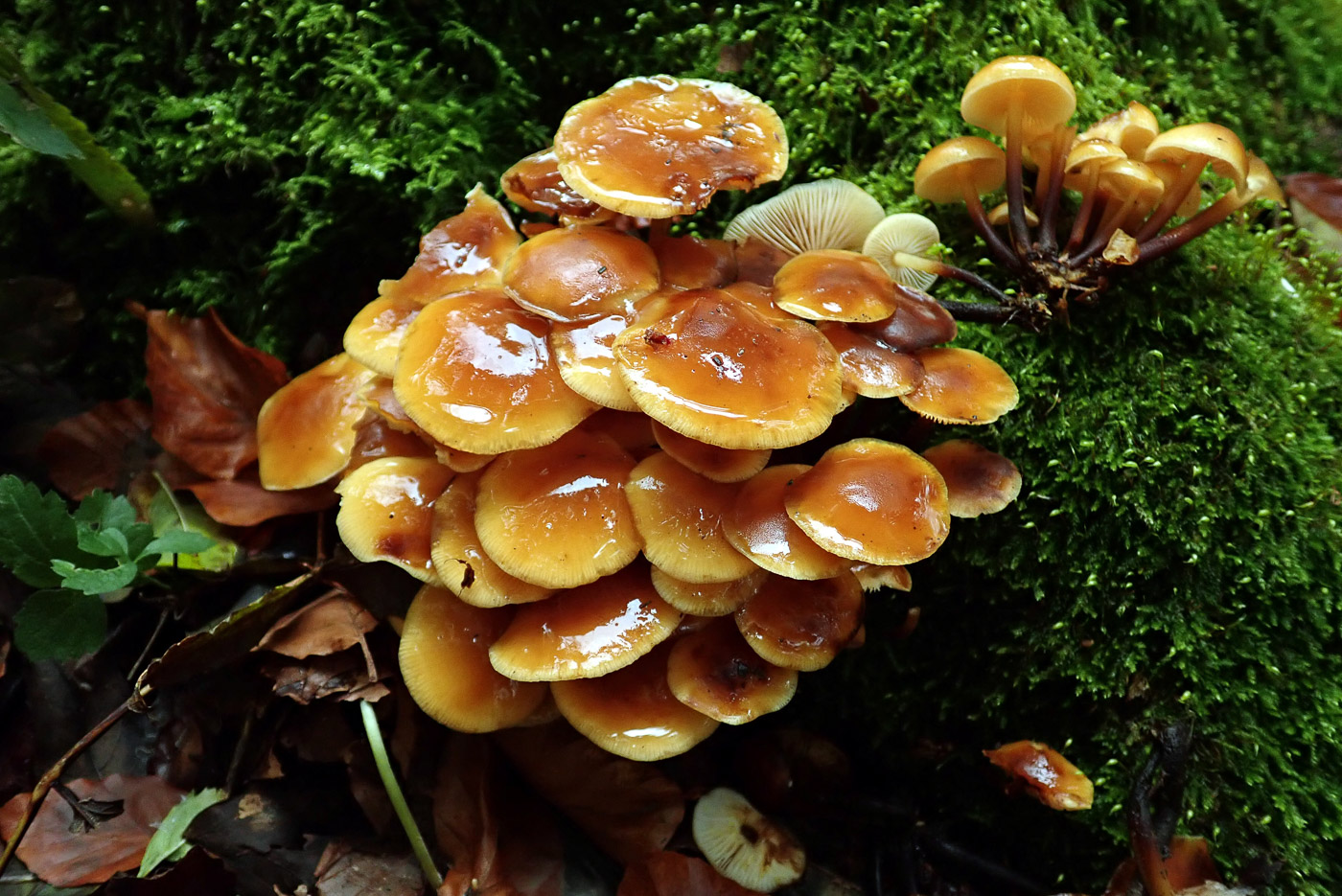
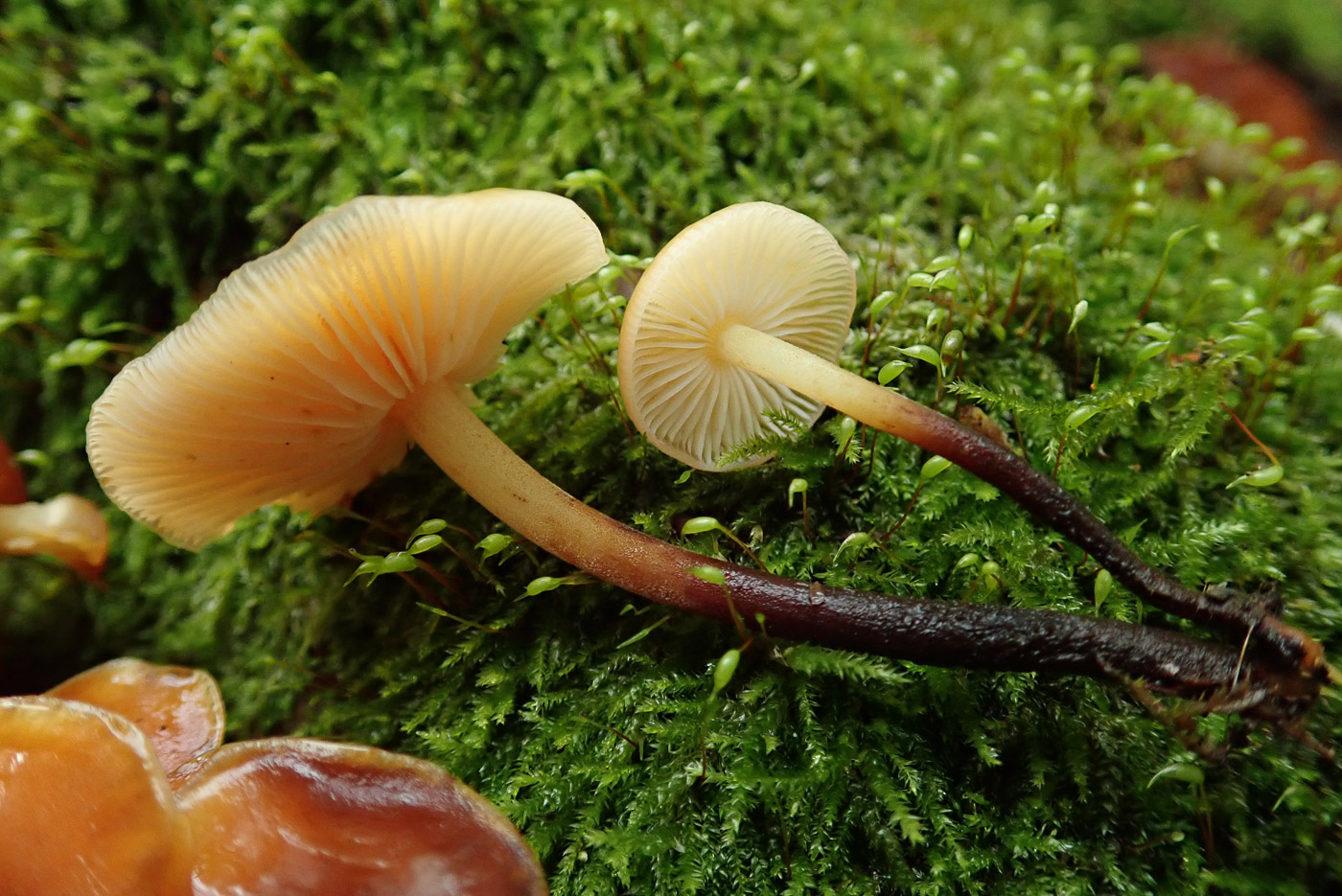
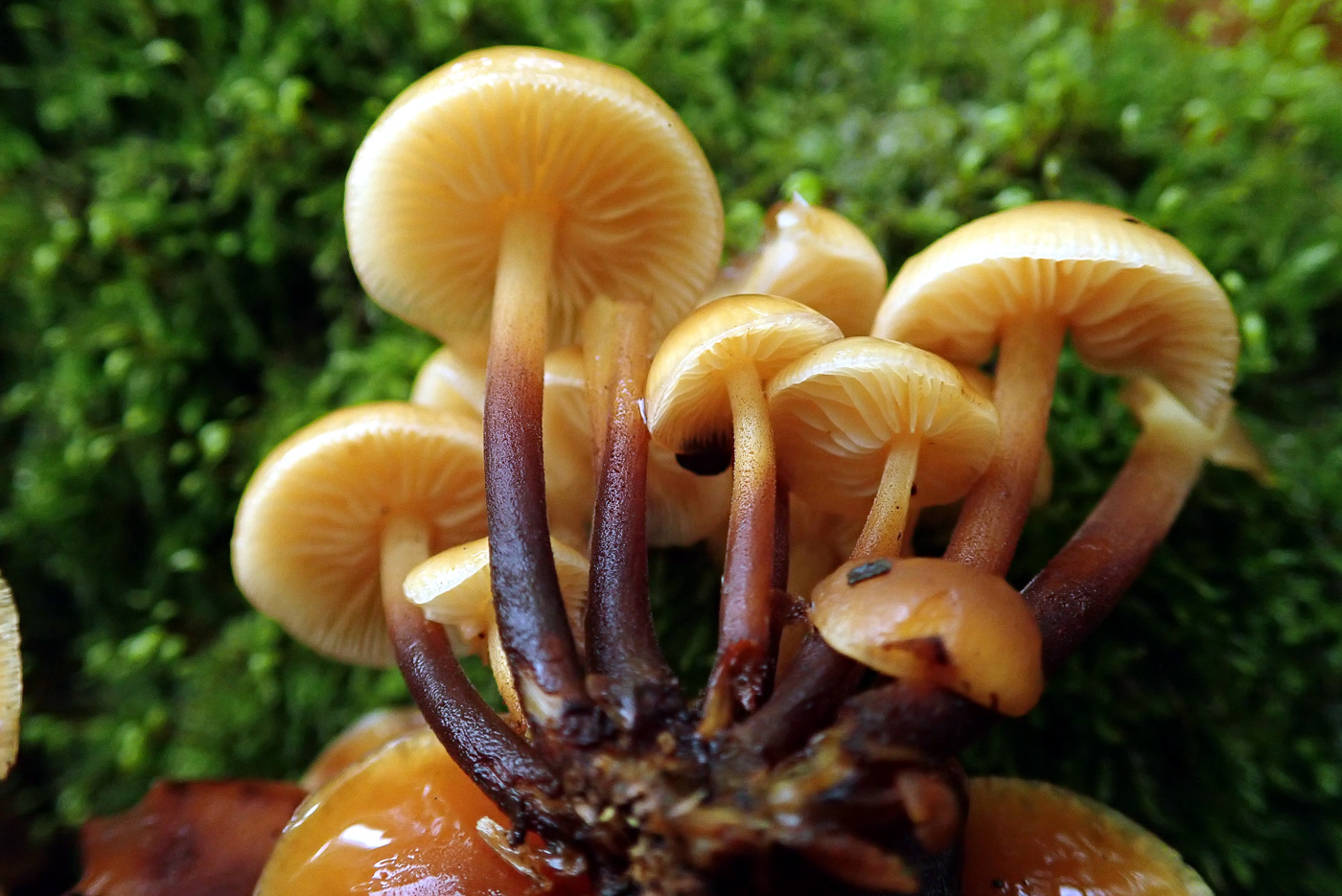 |
October 26th Flammulina velutipes (Velvet Shank)
Penny C. found this large and very slimy cluster on a rotting Beech log in Mousells Wood. This is definitely a late season species, often fruiting well after the frosts start and even with snow on the ground. So yet another sign that we are moving into late autumn now. This collection was pretty soggy so the velvet stem coating - a diagnostic feature - is not as distinctive here but can be seen in photo 3 on the young cluster. Note also the stem colour: pale at the top but quickly much darker reddish to black towards the base. The caps here were less than 3 cms across but can get bigger than this. Do not confuse with similar clusters of Pholiota (Scalycap) which do not always have scaly caps! However, the gills of Pholiota will always turn brown from the brown spores, whereas the gills and spores of Flammulina are whitish to pale yellow at most.
|
October 25th 2020
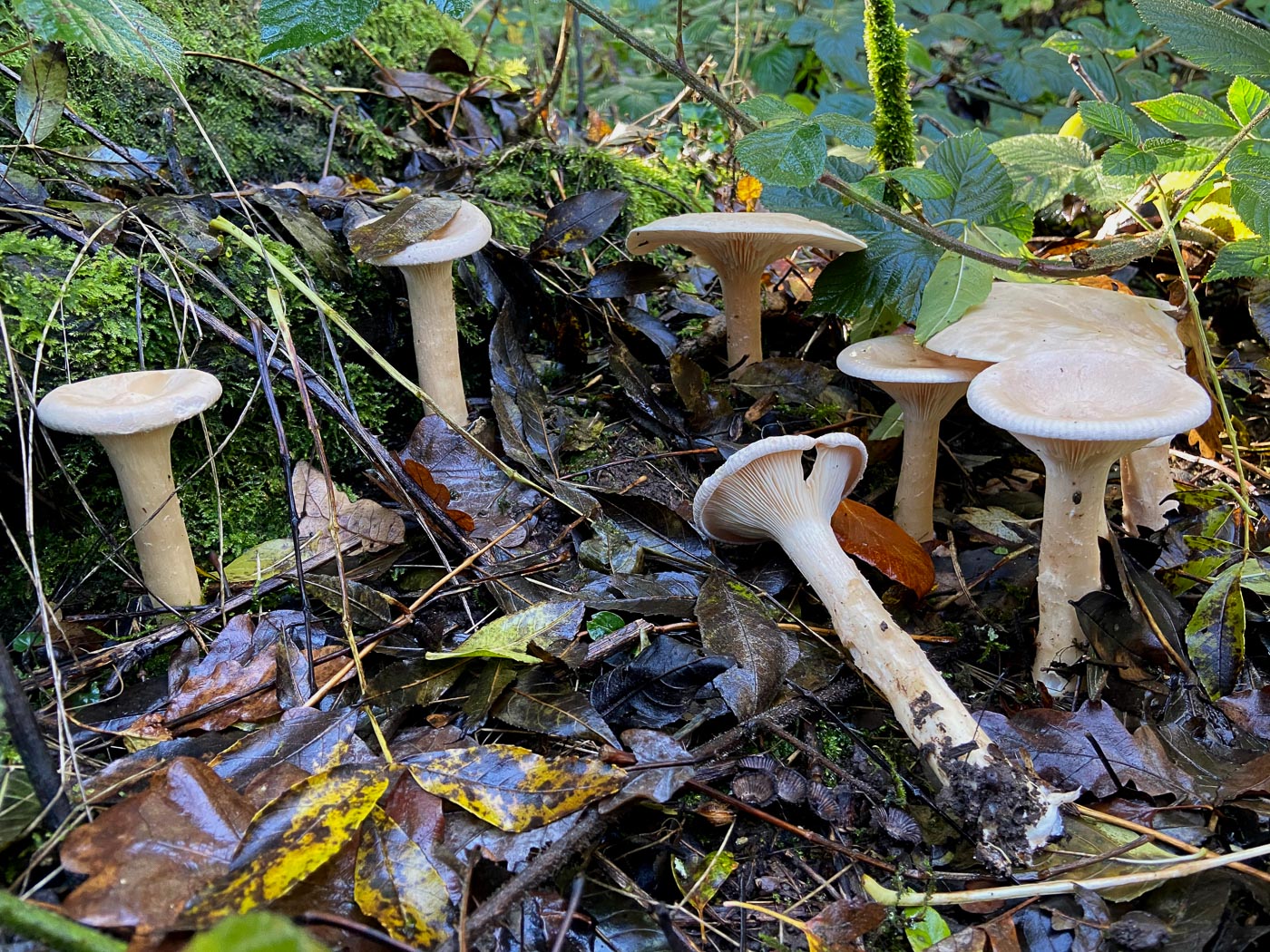
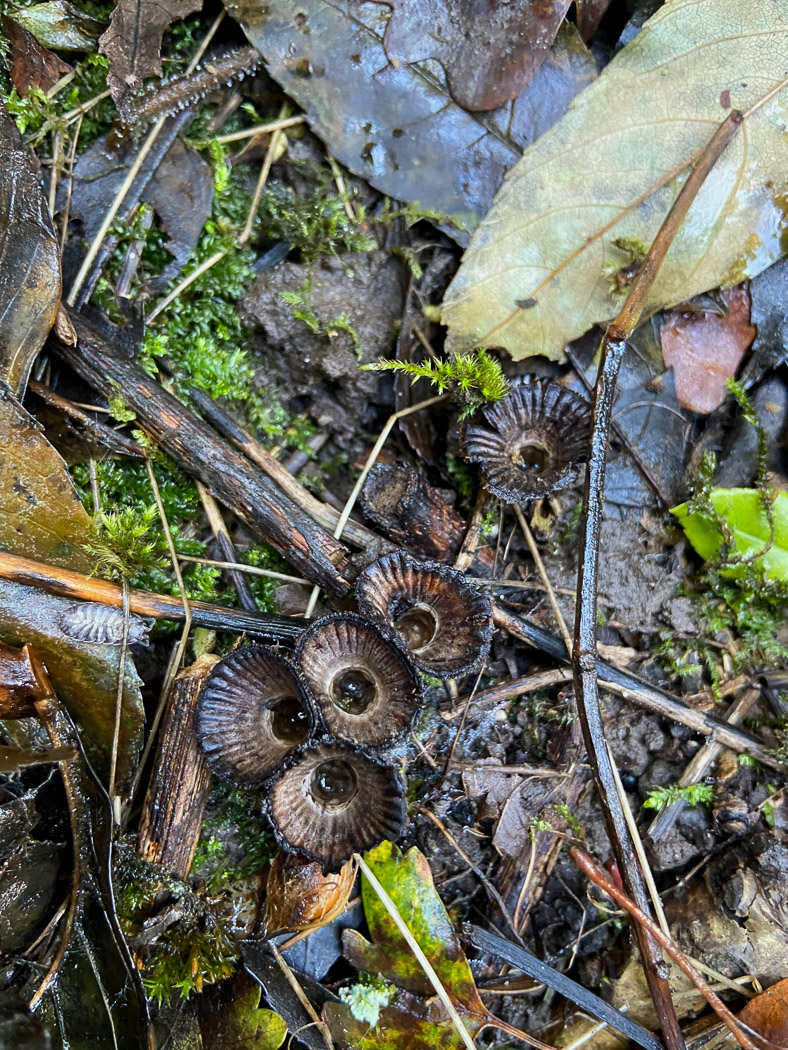 |
October 25th Cyathus striatus (Fluted Bird's Nest) with Infundibulicybe geotropa (Trooping Funnel)
In Marlow Common Sarah Ebdon took a shot of this photogenic troop of Trooping Funnel, only to notice at home later that there was a much more interesting fungus in view here! Can you locate it in photo 1 amongst the leaves? Photo 2 (taken the next day) shows the tiny conical fluted cups of Cyathus striatus which are up to 1 cm across and when at their peak contain the 'bird's eggs': tiny round whitish sacs, each full of spores, and attached to the cup by a thin umbilical-like chord. Sadly the material here is well past its best and no doubt also waterlogged, but a nice and lucky find!
|
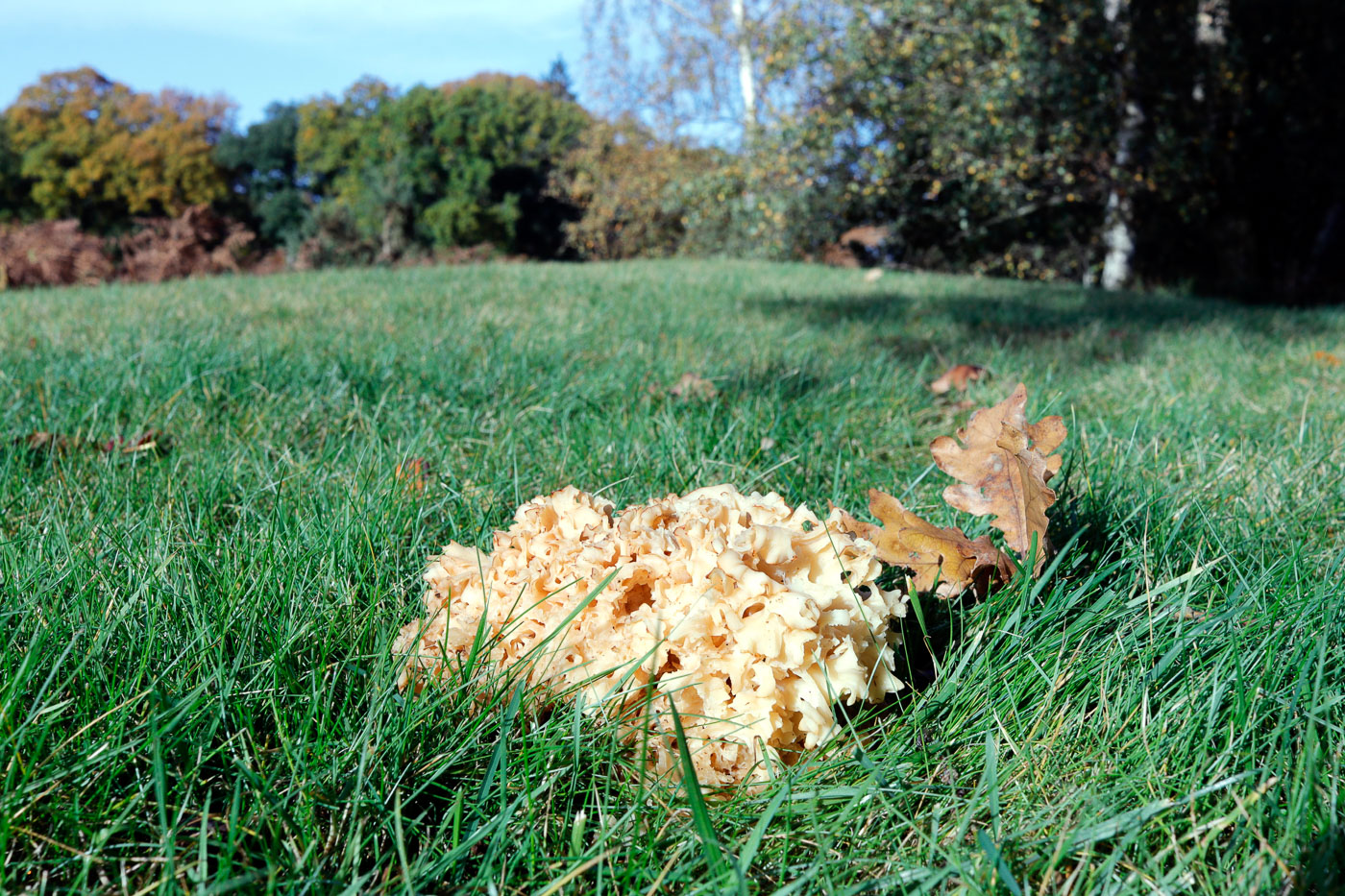
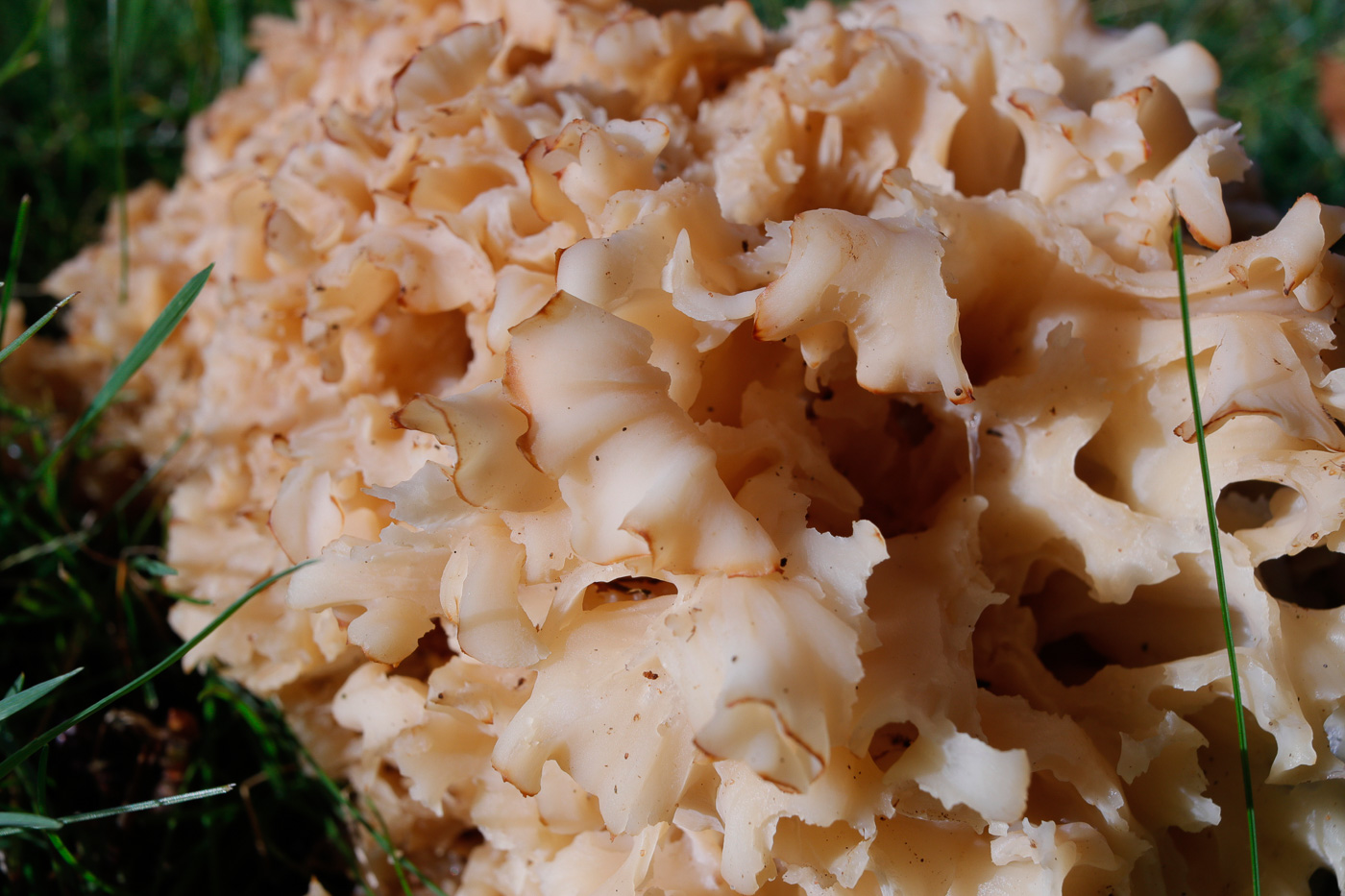 |
October 25th Sparassis crispa (a species of Wood Cauliflower)
Whilst walking on Woburn Golf Course, Justin Long came across this large clump of what was clearly a species of Sparassis. However, the fairly common S. crispa is known to grow only at the base of Pine trunks or occasionally other conifers and Justin noted that there was no conifer in the area and that this was growing in grass near Oak. For this reason we decided that a DNA sequence was called for: S. spathulata, a rarity which grows with Oak, was a possibility, as was S. brevipes - not yet found un the UK. Surely this had to be one of those two and with so many strange fungi being found this Autumn we felt anything was possible! Not so because in January the results showed that its sequence was a 100% match for S. crispa. This was not a wasted exercise, however: this may well be the first time the species has been positively identified growing with Oak, casting doubt on the previous few records of S. spathulata in the UK. The wonders of modern science!No
|
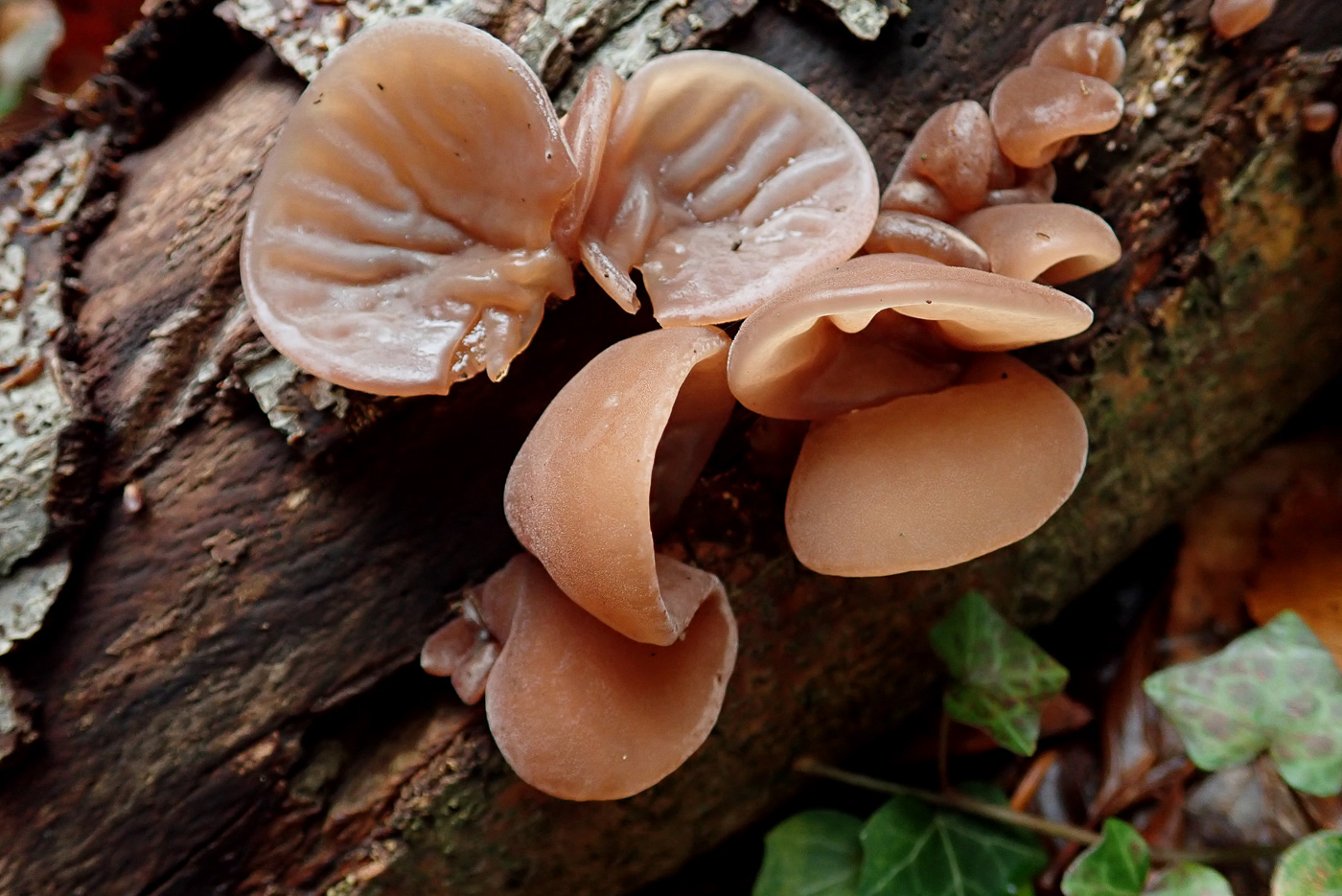 |
October 25th Auricularia auricula-judae (Jelly Ear)
We have a photo of this common species dated Sept 30th, but Penny's collection today on fallen Beech at Ragpits Nature Reserve gave an opportunity to share a more detailed image. The two top specimens show the inside of the 'ear' which is wrinkled and paler than the outside surface. Look for this species on living trunks and branches of Elder or (less commonly) on fallen branches of Beech.
|
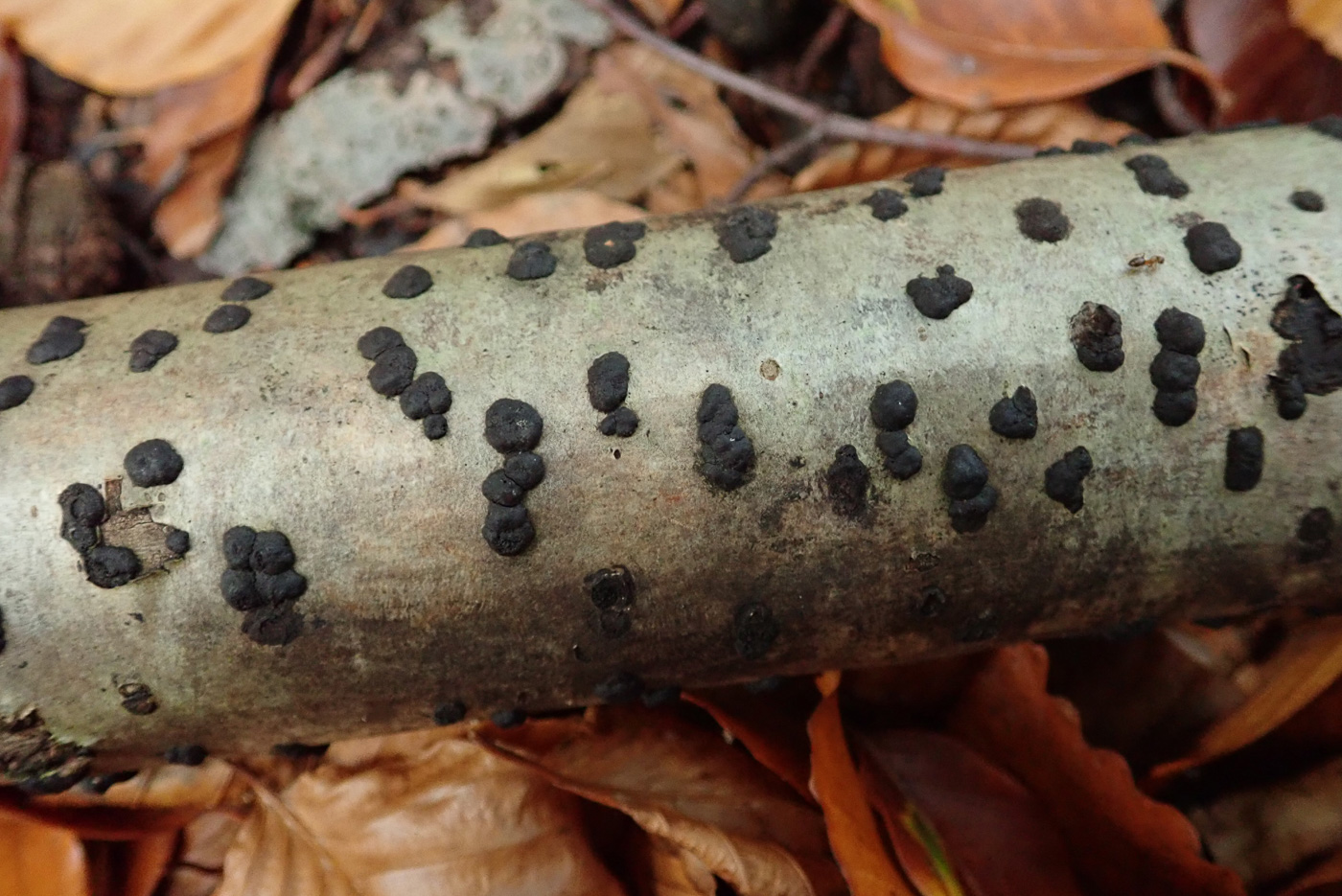 |
October 25th Hypoxylon fuscum ( (Hazel Woodwart)
Penny C. found a dead Hazel branch in Ragpits Nature Reserve which was liberally dotted with this very common Ascomycete. Identifying Woodwarts to species largely depends upon identifying the fallen wood they are found on. Compare with H. fragiforme (Beech Woodwart) dated Sept 22.
|
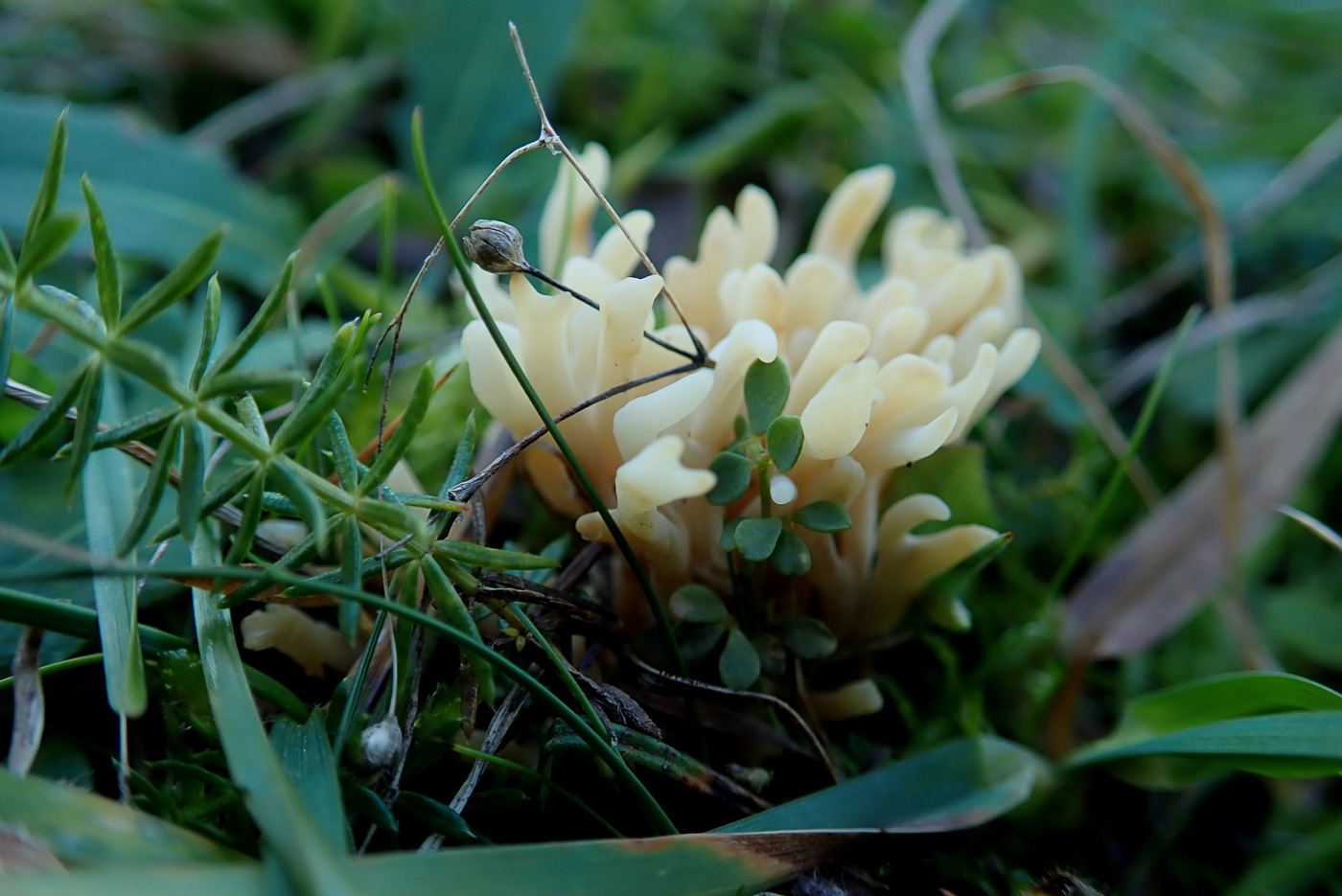
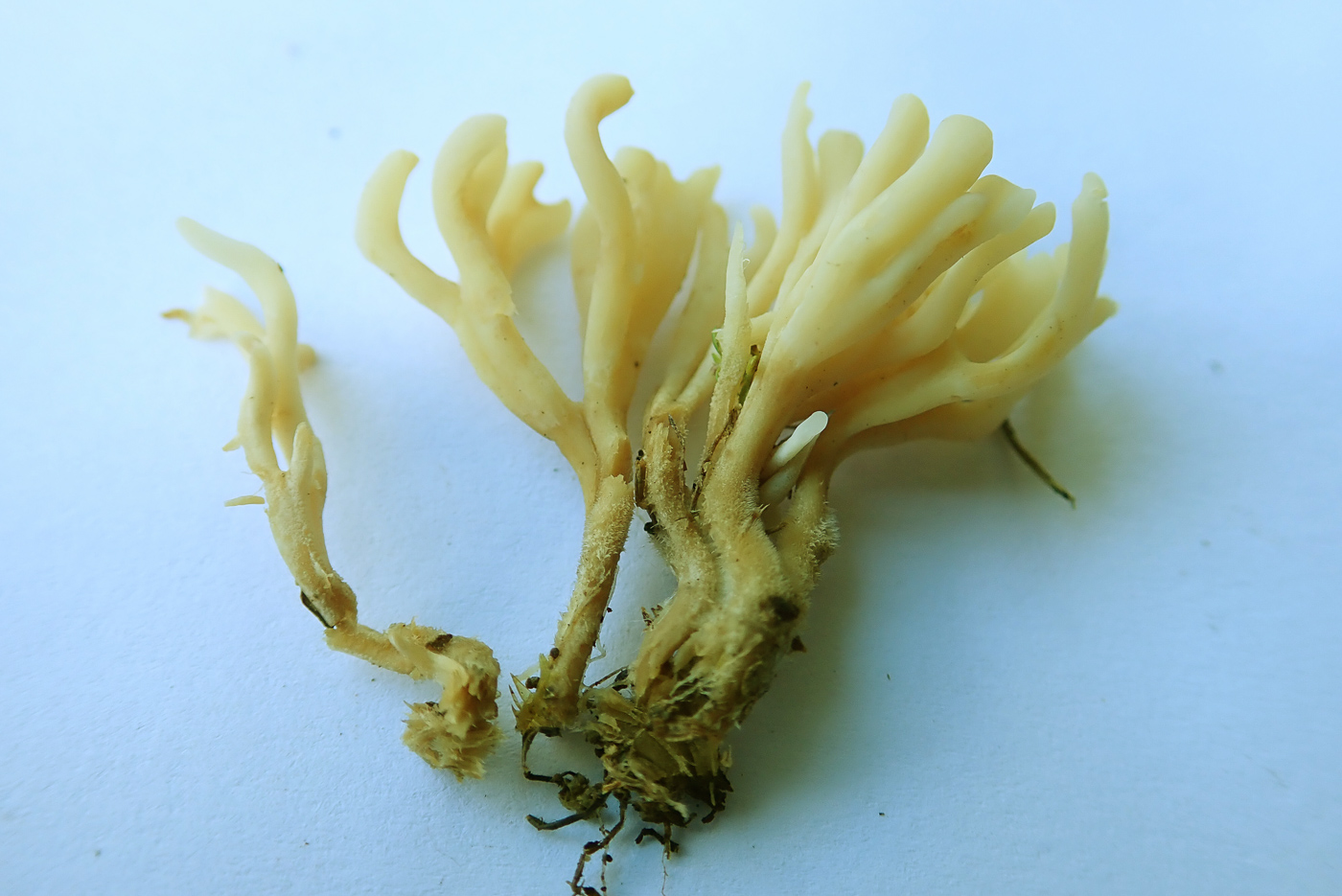 |
October 25th Clavulinopsis rufipes (A species of Coral with no common name)
Penny C. came across three little clusters of a small Coral she didn't recognise in moss in unimproved grassland at Ragpits Nature Reserve. It seemed on first glance quite similar to C. corniculata but was too pale and just didn't have the right 'jizz', so she took it home to work on. The tiny smooth ellipsoid spores, general appearance and small size (just 2-3 cms tall) fitted with the very rare C. rufipes, illustrated in Kibby vol 1 and the Collins Field Guide, and sure enough the rather blunt-tipped branches joined at the base which was slightly rufous brown - the diagnostic feature. So this is new to the county and a species with very few national records.
|
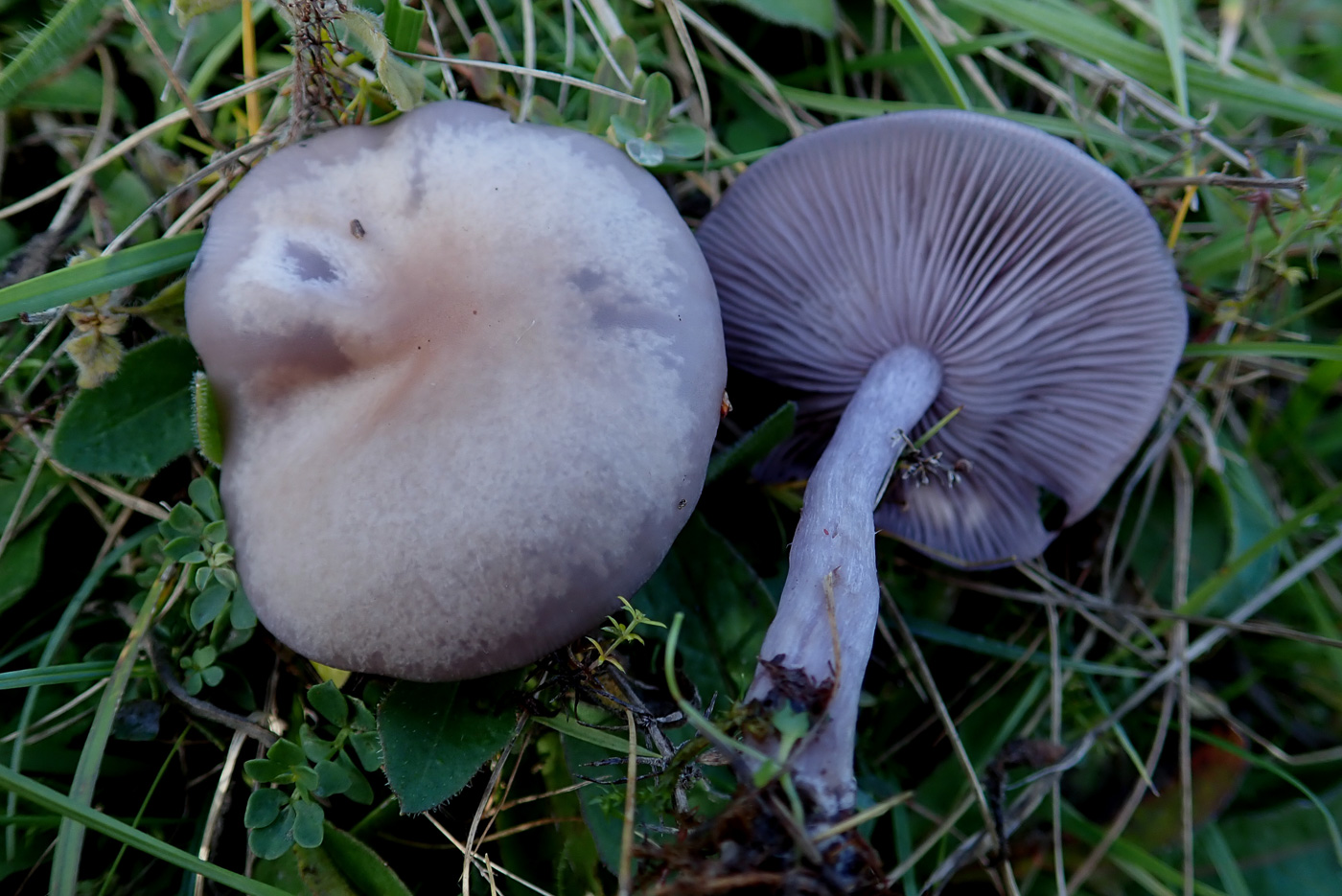 |
October 25th Lepista sordida (Sordid Blewit)
Penny C. found this pair together in unimproved grassland at Ragpits Nature Reserve. This occasional species - far from being 'sordid' in our modern sense of the word - can be described as a slimmed down and more delicate version of the much more common and familiar L. nuda (Wood Blewit). The beautiful violaceous colour tends to fade to brown though is retained in the gills, and the cap is flatter with thinner flesh than in L. nuda which can get quite bulky in comparison with a considerably thicker stem. Compare with photo of that species dated Oct 16.
|
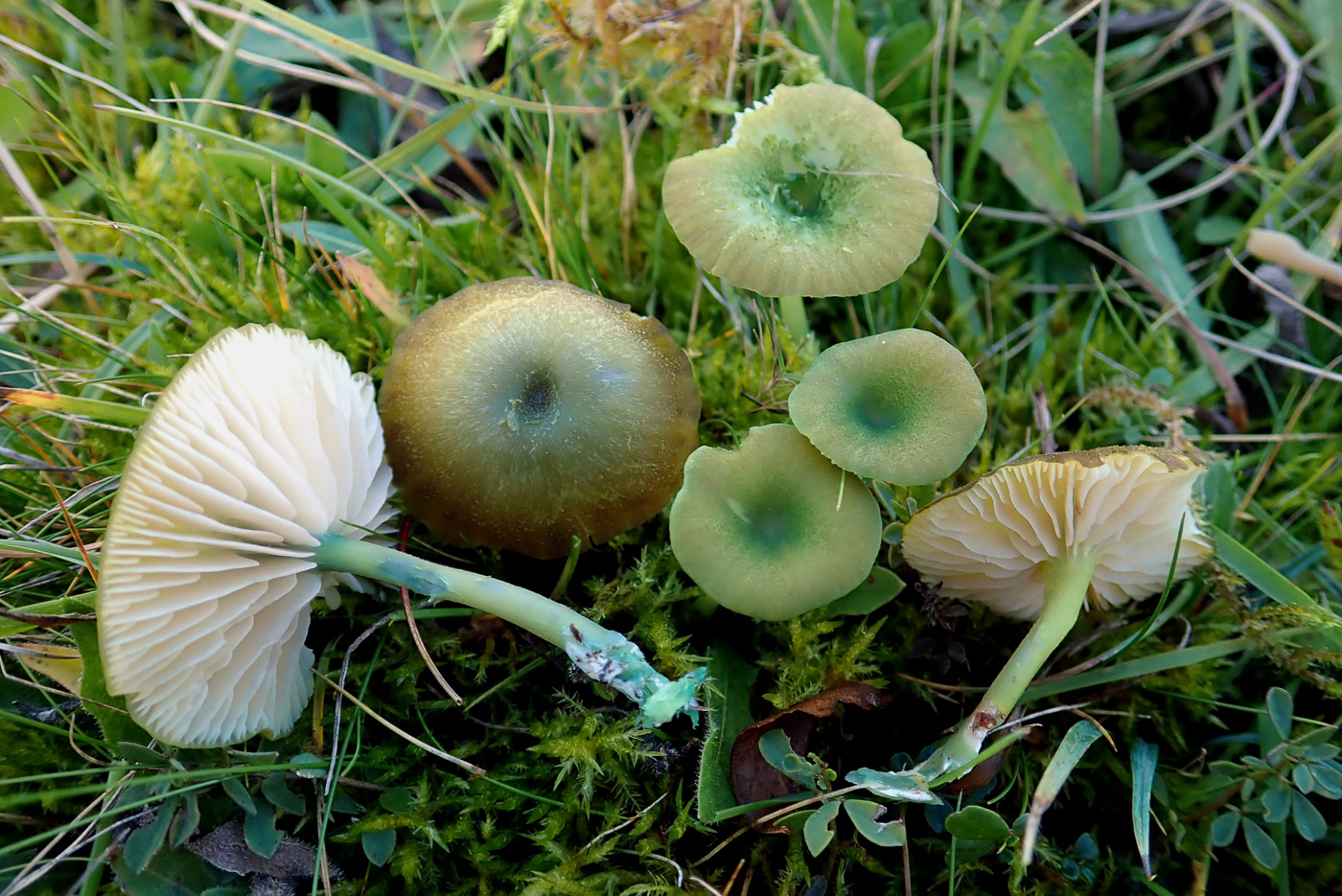 |
October 25th Entoloma incanum (Mousepee Pinkgill)
Penny C. was please to find good numbers of this interesting little mushroom in unimproved grassland at Ragpits Nature Reserve. Nearly all Pinkgills need a scope to identify to species (and even then they are often very tricky), so it's always a delight to come across one which leaves one in no doubt for the name. An uncommon grassland species, it has several redeeming features: the unique green cap colour is enough on its own, but the stem stains turquoise once handled and furthermore it has a strong smell of mouse pee! If you kept mice in a cage as a child, this is precisely the smell which reminded you that the cage needed cleaning out!
|
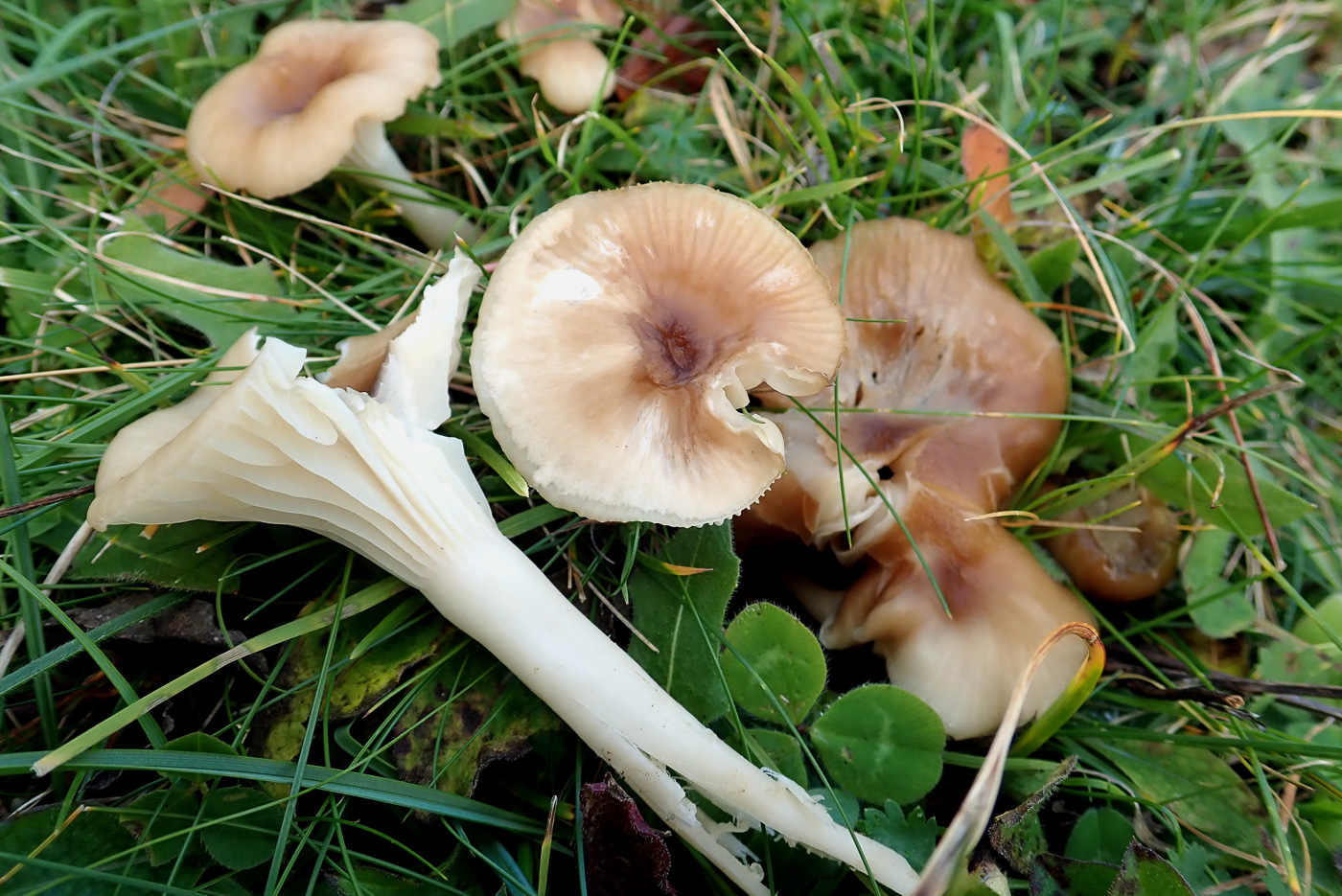
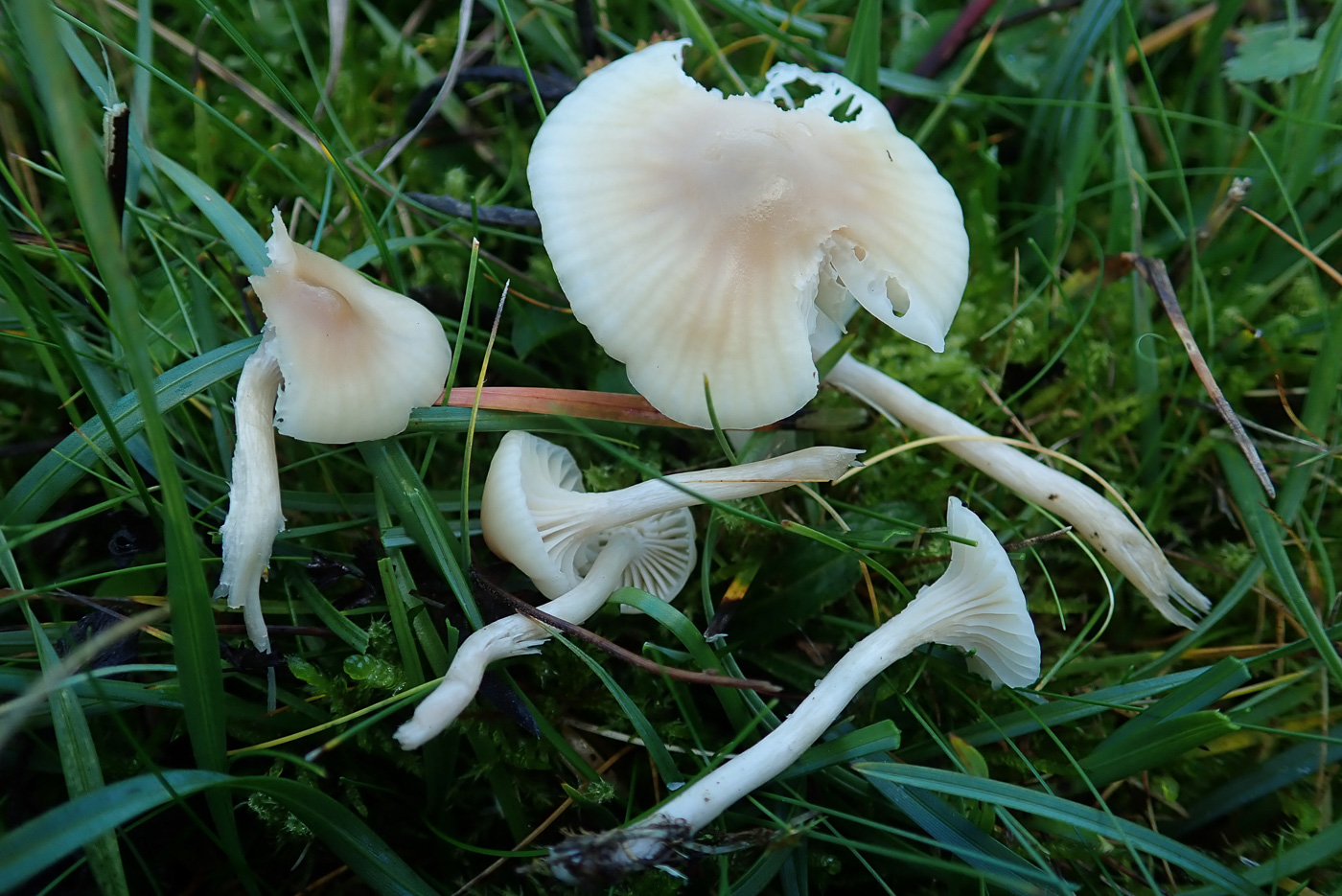 |
October 25th Hygrocybe virginea var. fuscescens (a species closely related to Snowy Waxcap)
Several collections of this unusual variety of Waxcap were found by Penny C. in unimproved grassland at Ragpits Nature Reserve where BFG has recorded it before at this site in past visits, though at no other county site. Recognised by its strongly decurrent gills (as in the very common white capped H. virginea) this variety has an off white to cream cap with a cinnamon brown central spot, also the cap tends to develop radial striations in the outer half (visible in the central cap in photo 1). Like H. virginea it lack any smell.
|
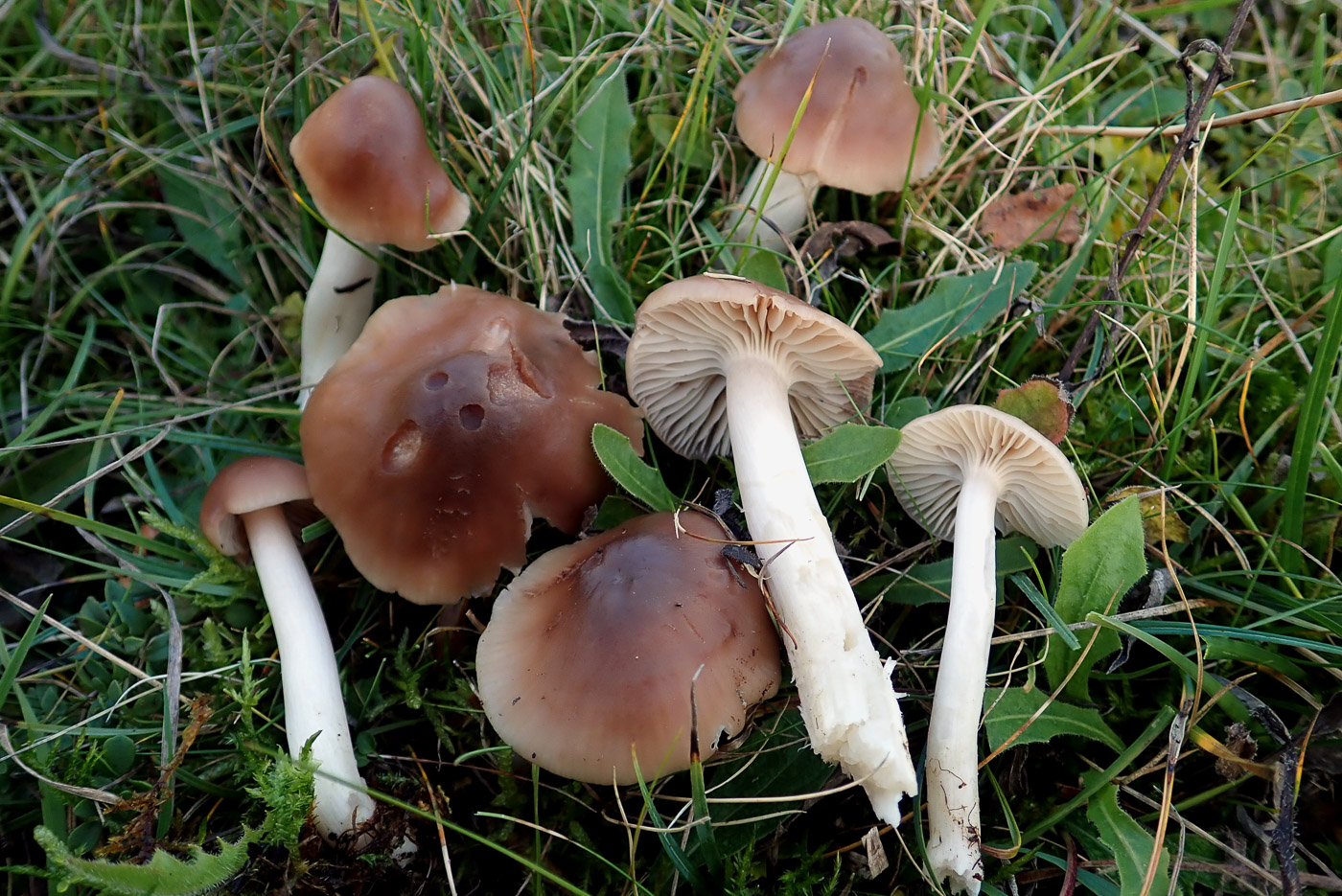
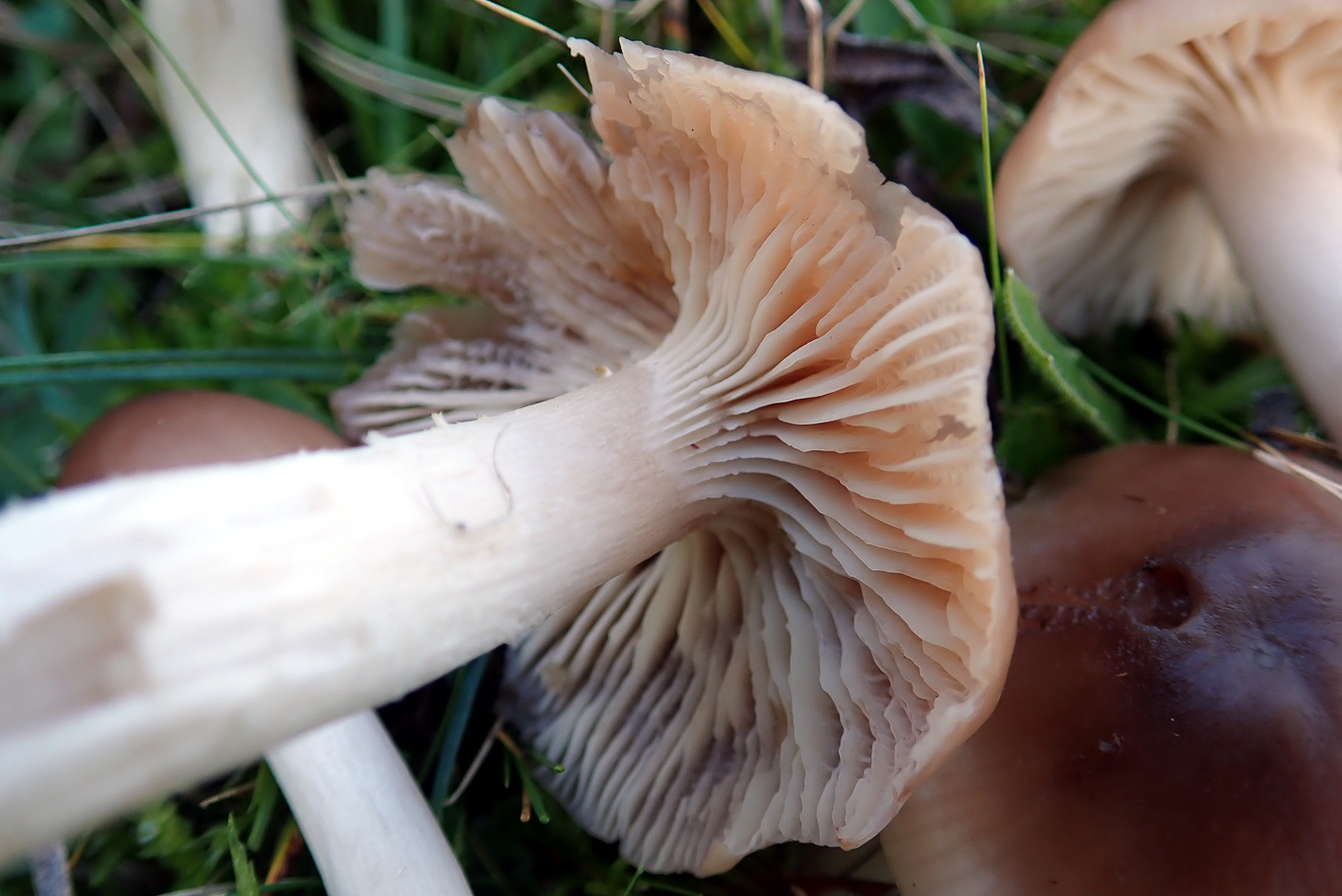 |
October 25th Cuphophyllus colemannianus (Toasted Waxcap)
Better known as Hygrocybe colemanniana, this occasional Waxcap with a rich brown cap was found in good numbers in unimproved grassland at Ragpits Nature Reserve by Penny C. This is a medium sized species with a greasy cap when moist but a dry stem and the gills are pale buff and distinctly decurrent. Caps can sometimes be reddish brown and sometimes paler brown but the gill colour and shape help to confirm the identification if in doubt.
|
October 24th 2020
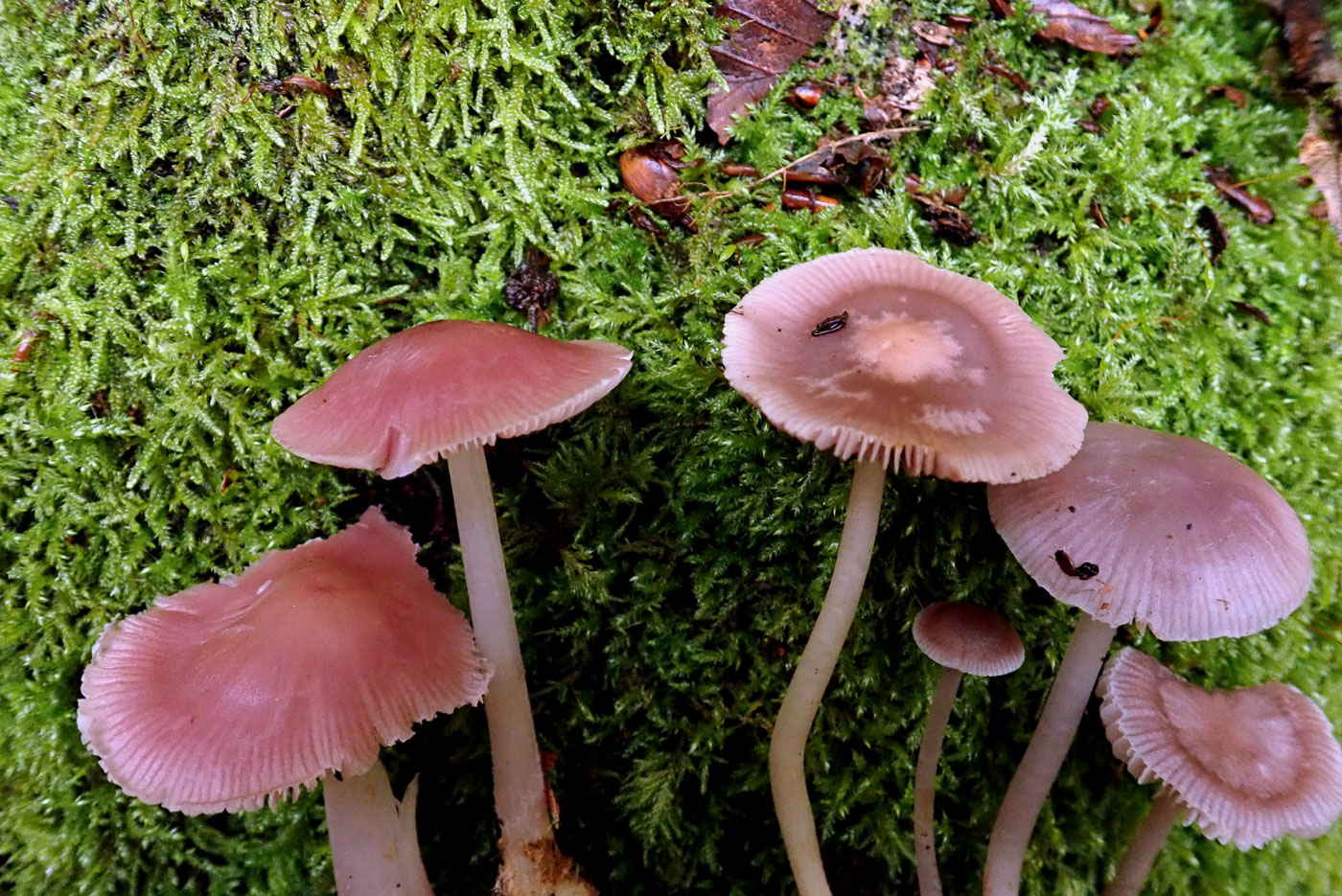
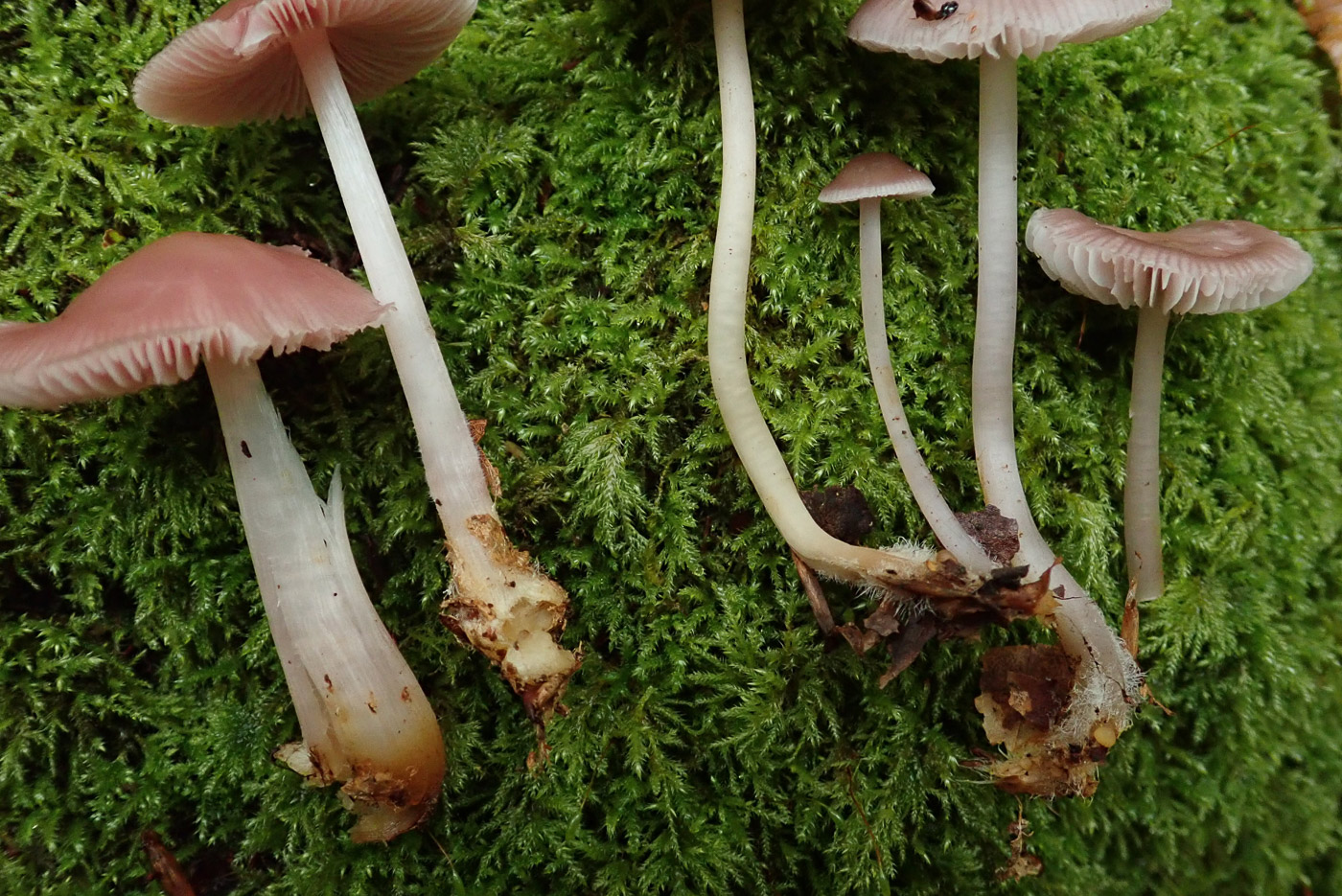
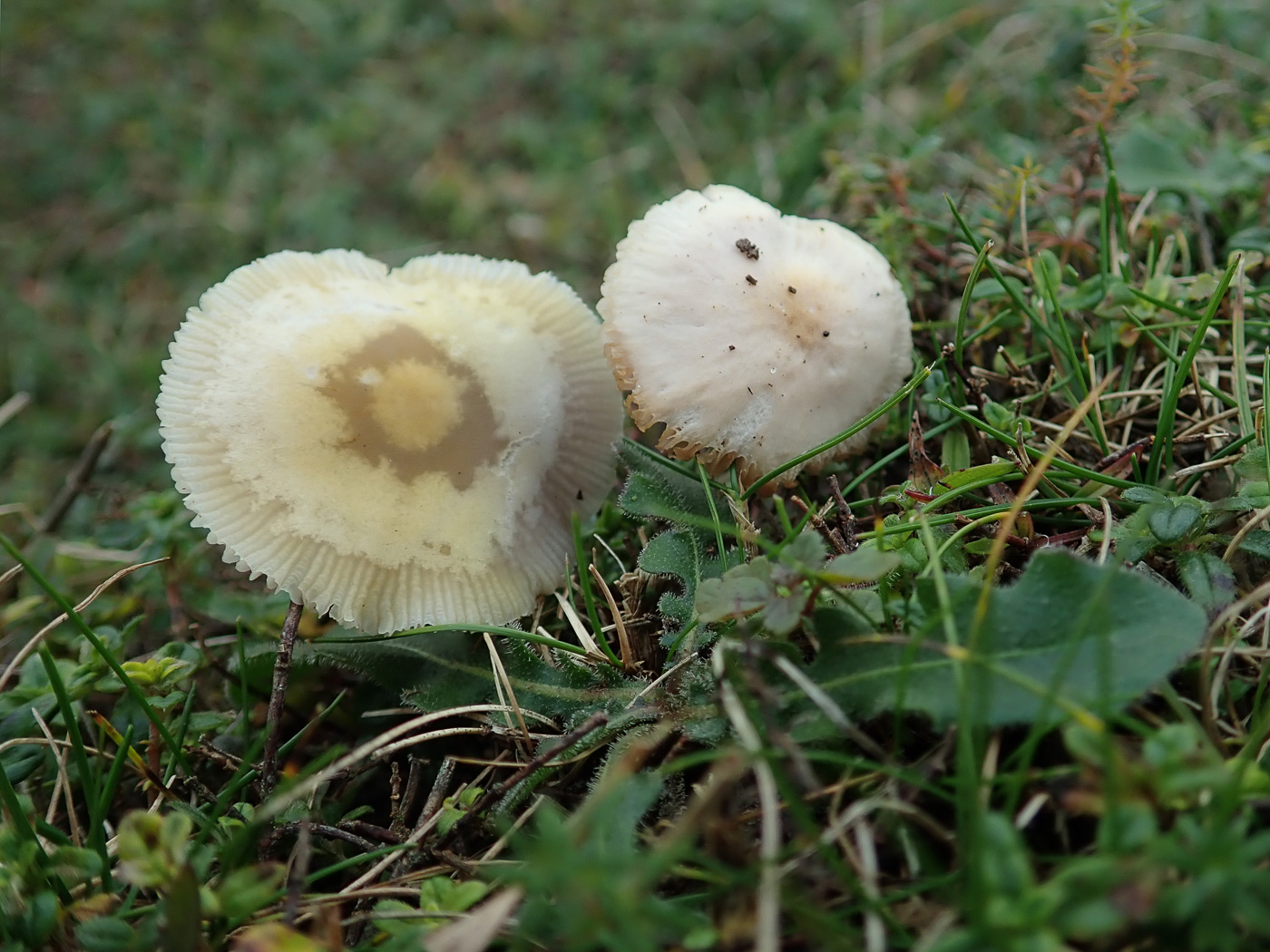
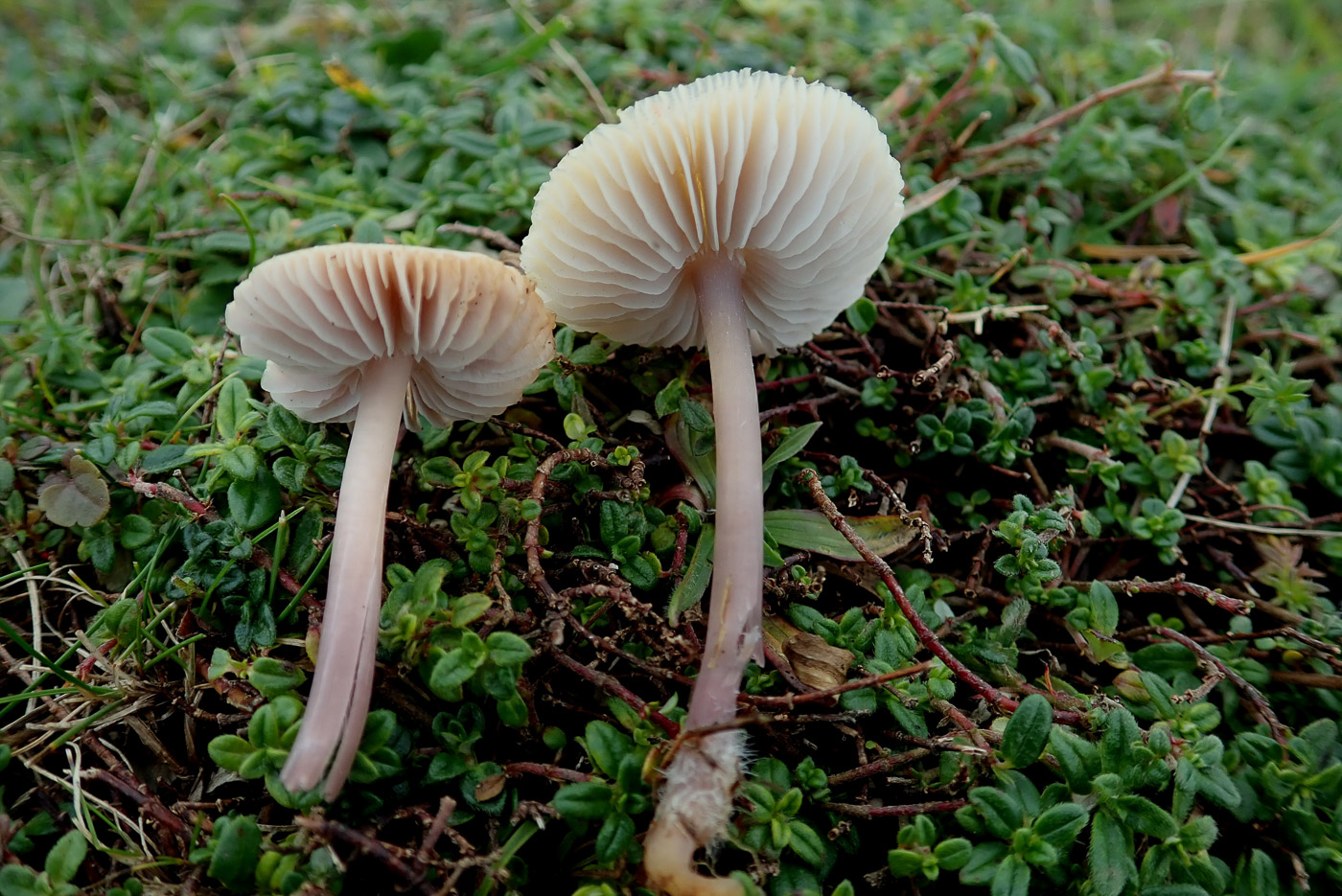 |
October 24th Mycena pura and Mycena rosea (Lilac Bonnet and Rosy Bonnet)
We do have both species already (dated Oct 18 and Oct 10) but as both species were growing together in Beech litter in Gussetts Wood Penny C. took the opportunity to compare the two as their separation can cause difficulty. Both are common and found in the same habitat, both have a raphanoid smell (sharp, of radish). On the left is M. rosea (2 specimens), on the right is M. pura (3 specimens plus a baby). Note the pink with no mauve / brown tints in the caps of M. rosea which also tends to be chunkier and fleshier though that feature not so apparent here. Note also the stem shape - tapering upwards and thicker at the bottom in M. rosea which can be white or pale pink. In M. pura the stems are cylindrical and never pink but either whitish or a paler version of the cap colour. Photo 3 shows how confusingly variable M. pura can sometimes be, seen here with yellow tones rather than lilac when growing in grassland (at Coombe Hill Oct 30th). Note the lilac tones still apparent in the stems, however, and the radish smell is always a good character to check, whatever the cap colour!
|
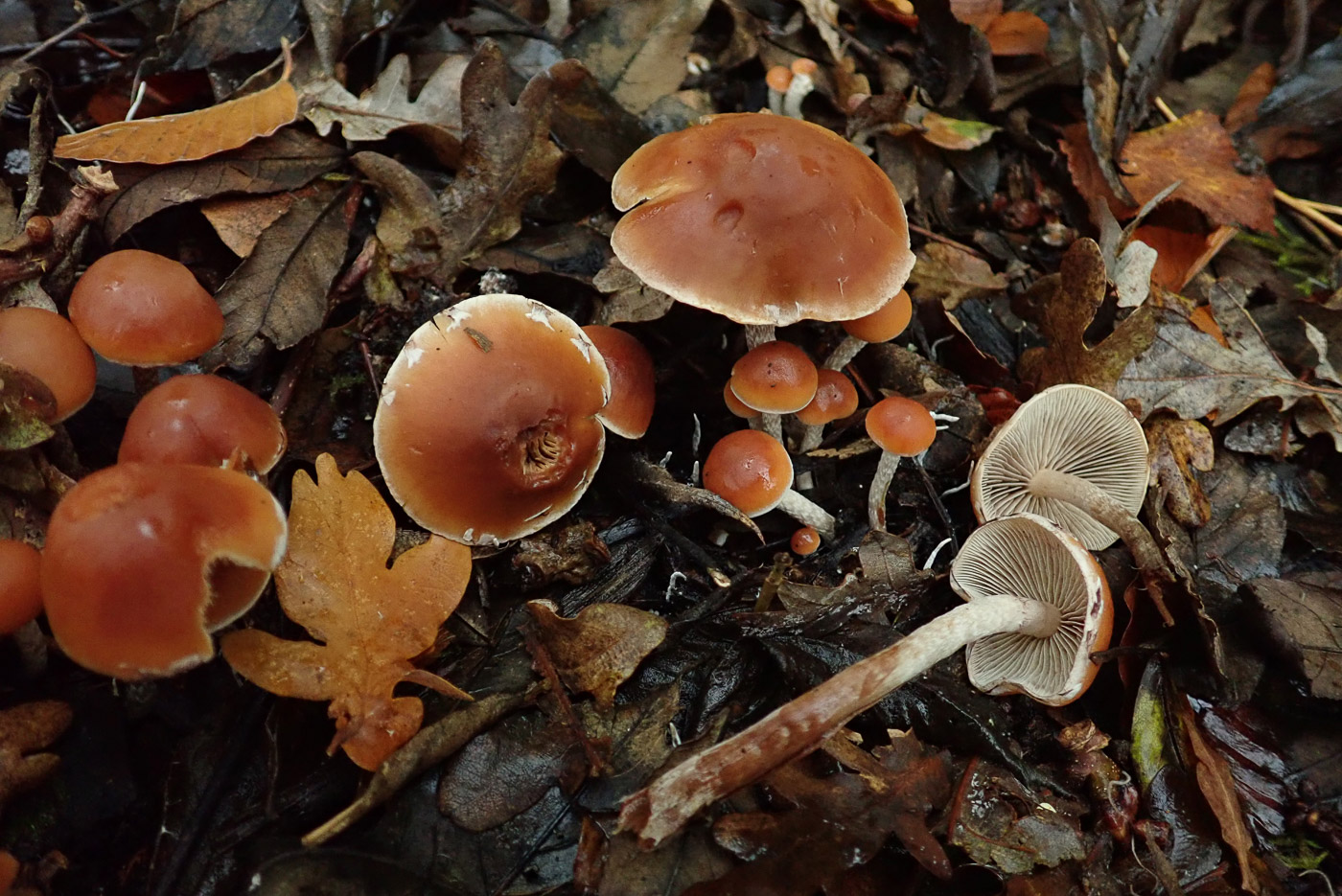
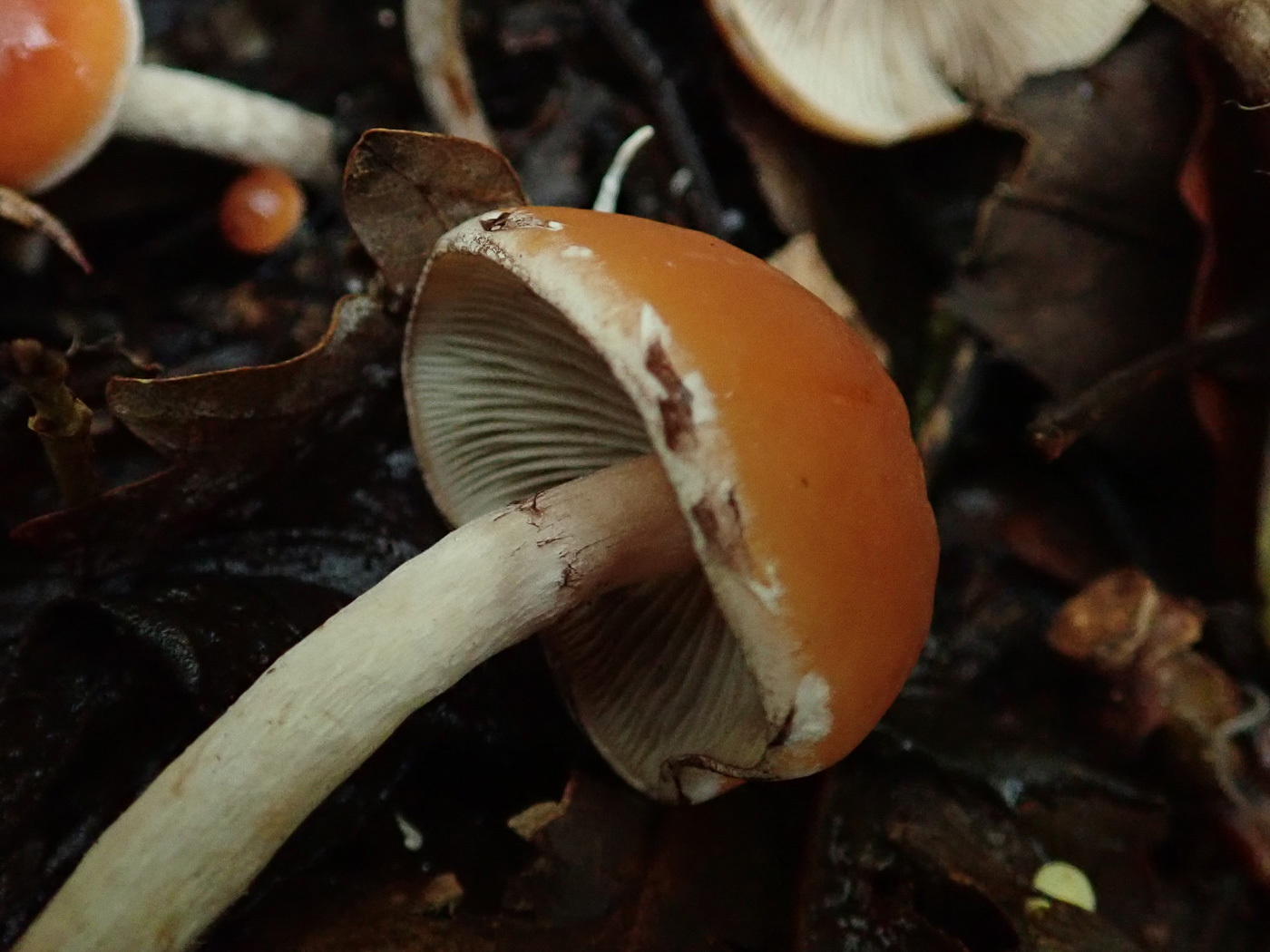
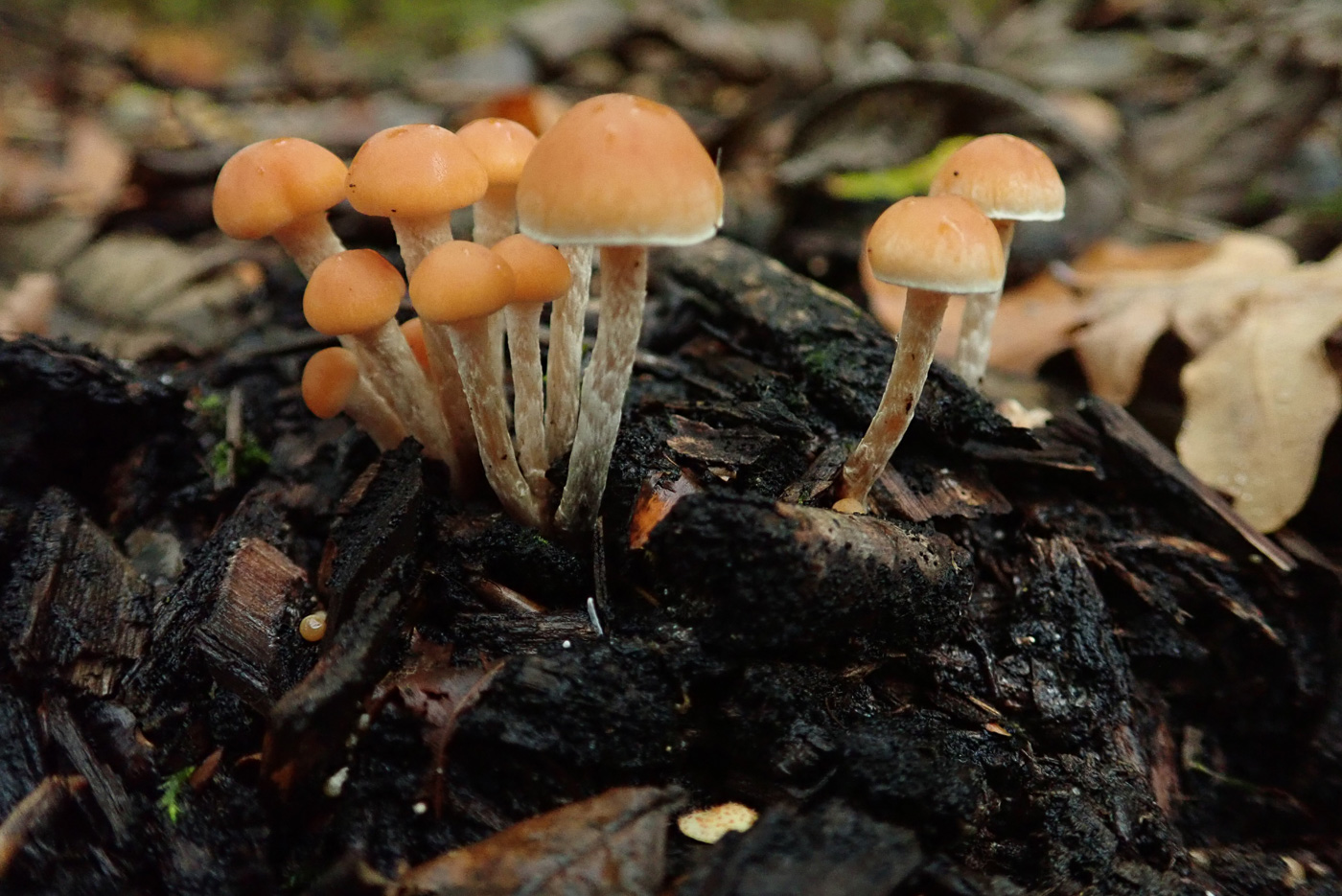 |
October 24th Hypholoma lateritium (Brick Tuft)
Paul C. found this large cluster on rotting woodchips in Gussetts Wood (photo Penny C.). Belonging to the same genus as the common and familiar Sulphur Tuft, this species is far less frequent and generally occurs on deciduous stumps. Features to note beside the bright rusty brick cap colour are the pale margin where flecks of veil often remain (not visible in the young collection but clear on photos 1 and 2,) the pale crowded but slightly concave gills which lack the sulphur tints found in Sulphur Tuft and which become much darker once the blackish spores mature, also the stem which is fluffy when young but becomes smooth though darker in the lower half with a faint ring zone remaining, visible in photo 2 where coloured by the dark spores.
|
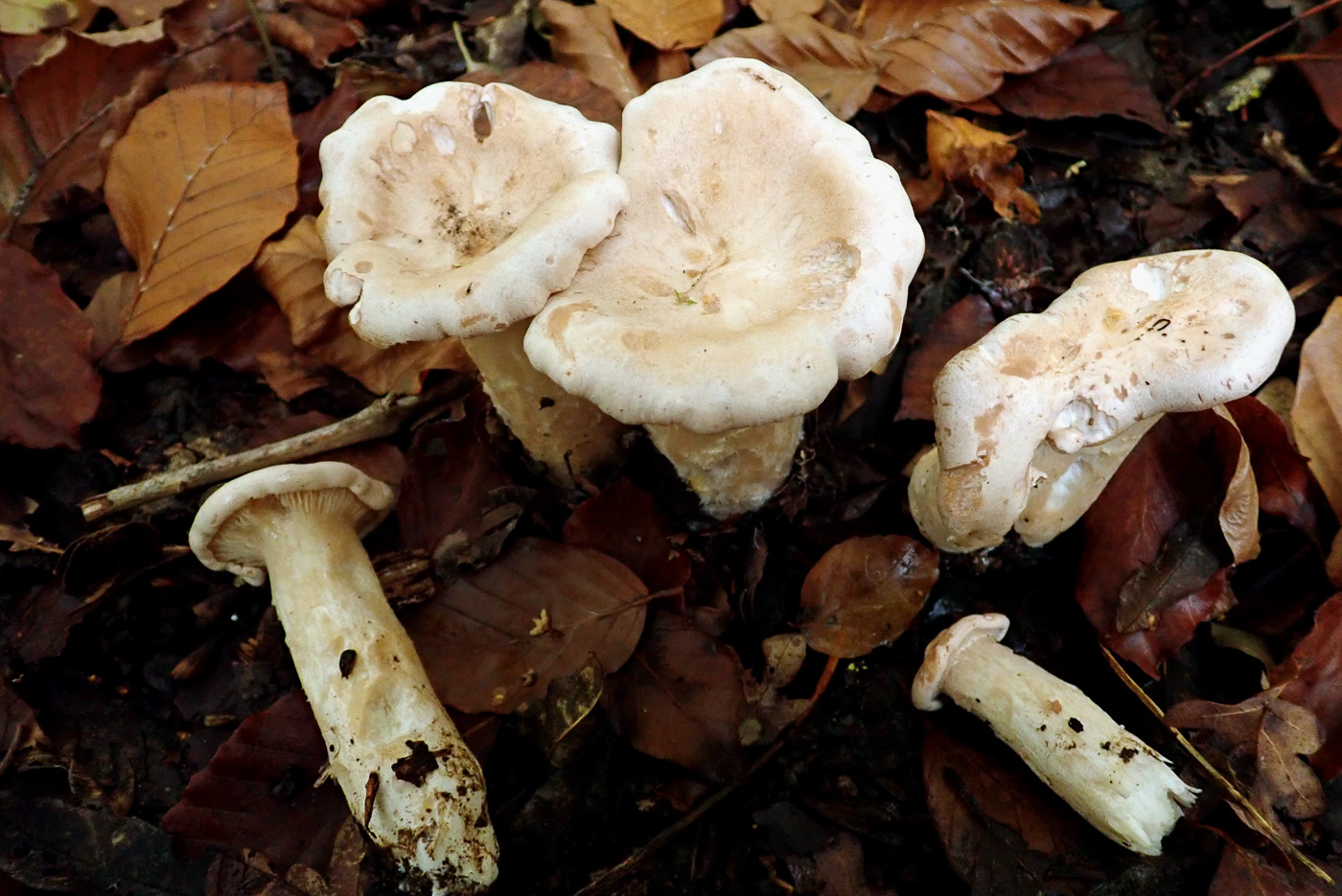
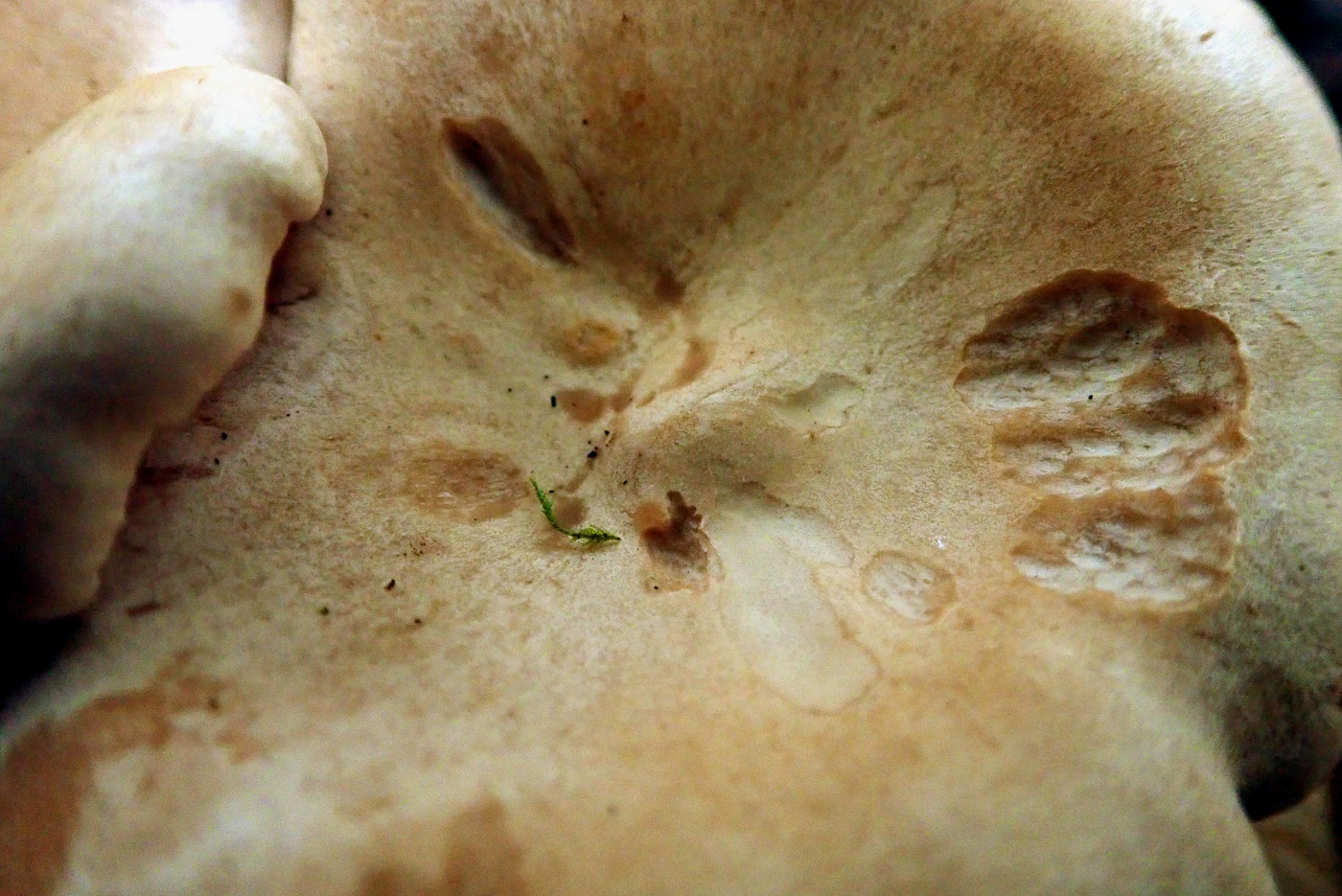
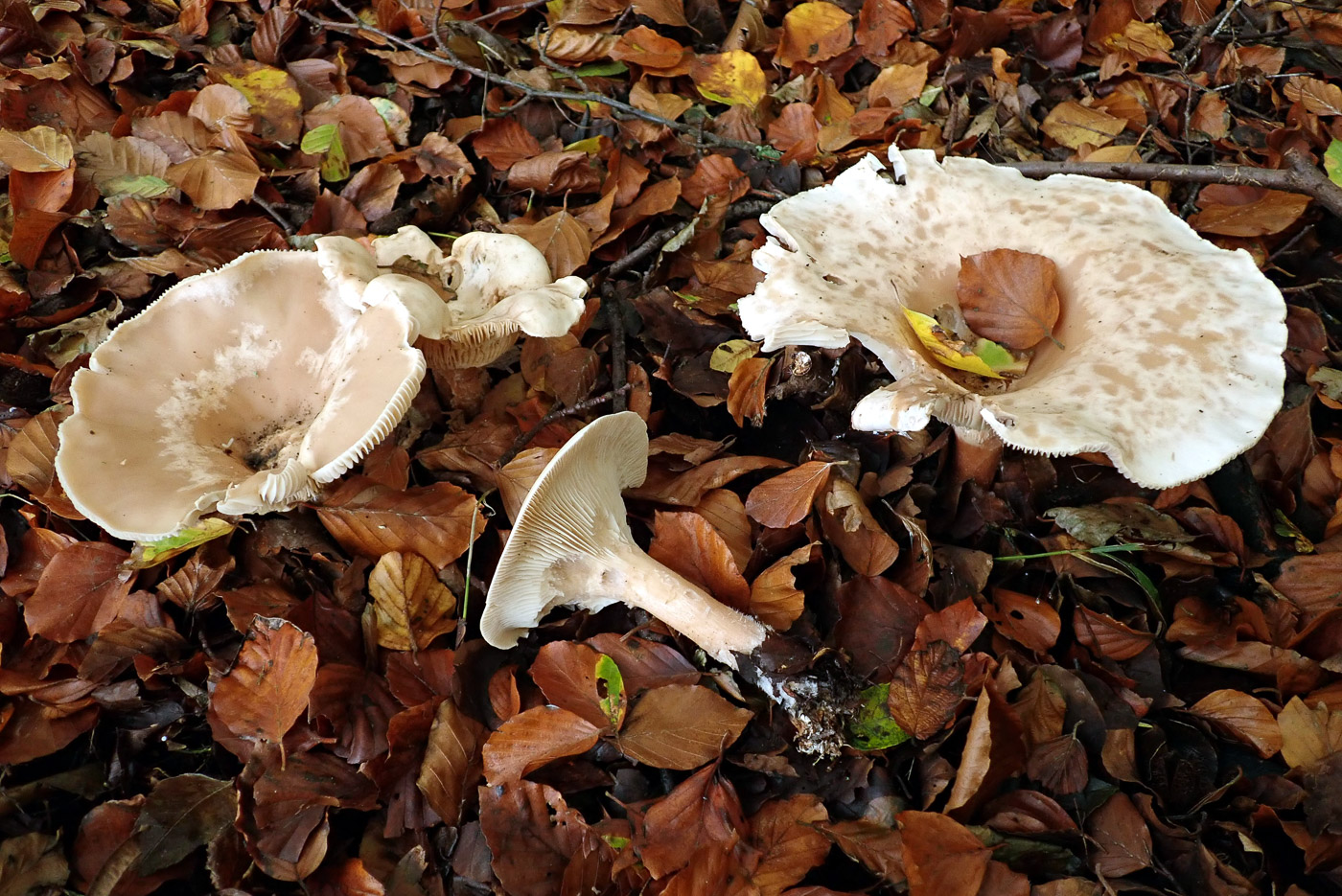 |
October 24th Infundibulicybe geotropa (Trooping Funnel)
We do have a distant photo of this common species (dated Oct 19) but today's collection of young material, found in Beech litter in Gussetts Wood by Paul C. (photo Penny C.), might help to elucidate. Note the strongly decurrent gills and thick stem which clearly will eventually support a large fruit body, also the fibrillose cap surface which is sunk in the middle but even at this early stage with a bump in the centre. This becomes more prominent as the cap expands and is a feature not found in the similar Clitocybe nebularis which at this stage is grey rather than cream of today's species. When both are fully mature and aging, however, they are extremely difficult to separate! Photo 3, taken a couple of days later in Mousells Wood shows large mature specimens, the cap on the right being 20 cms across.
|
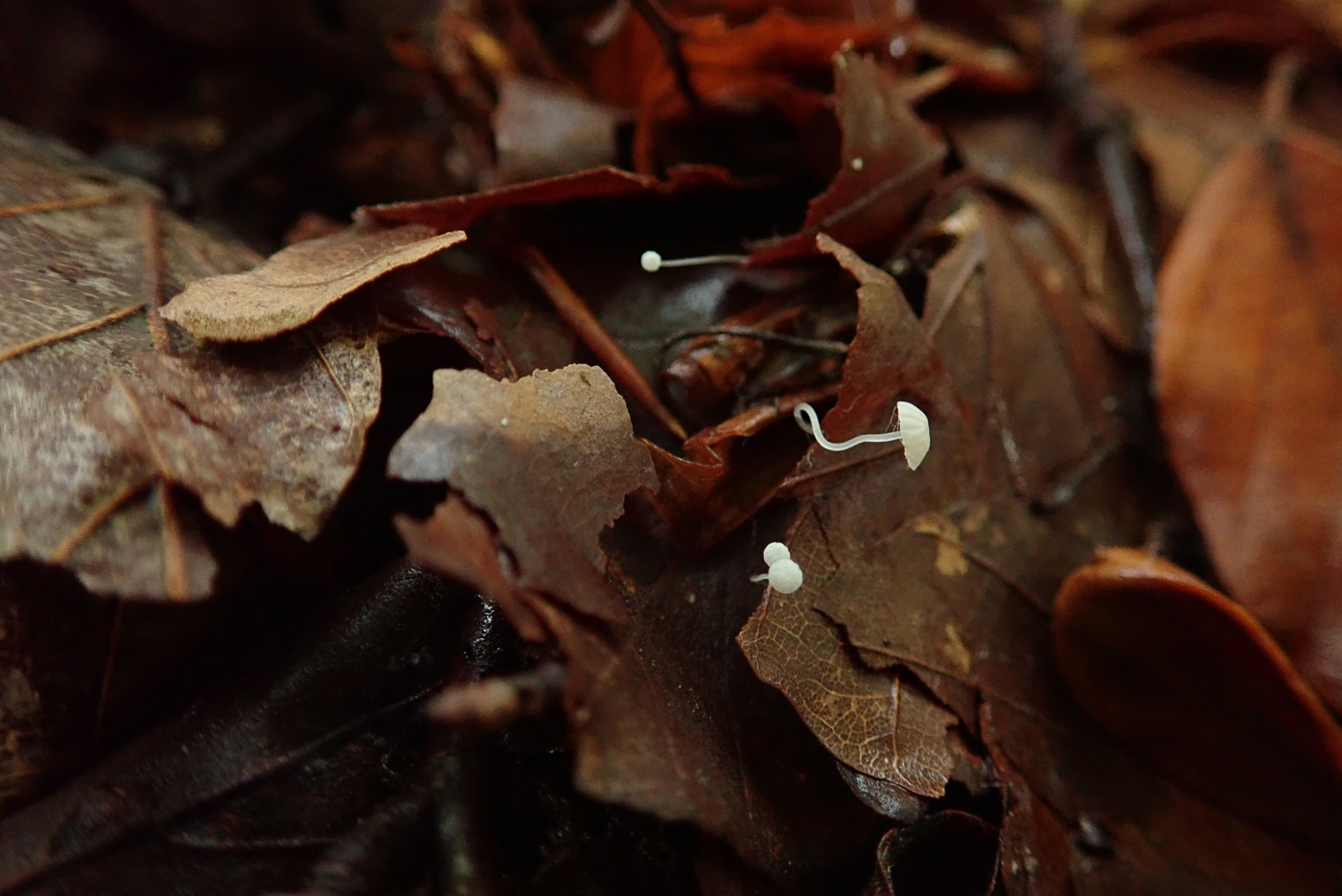
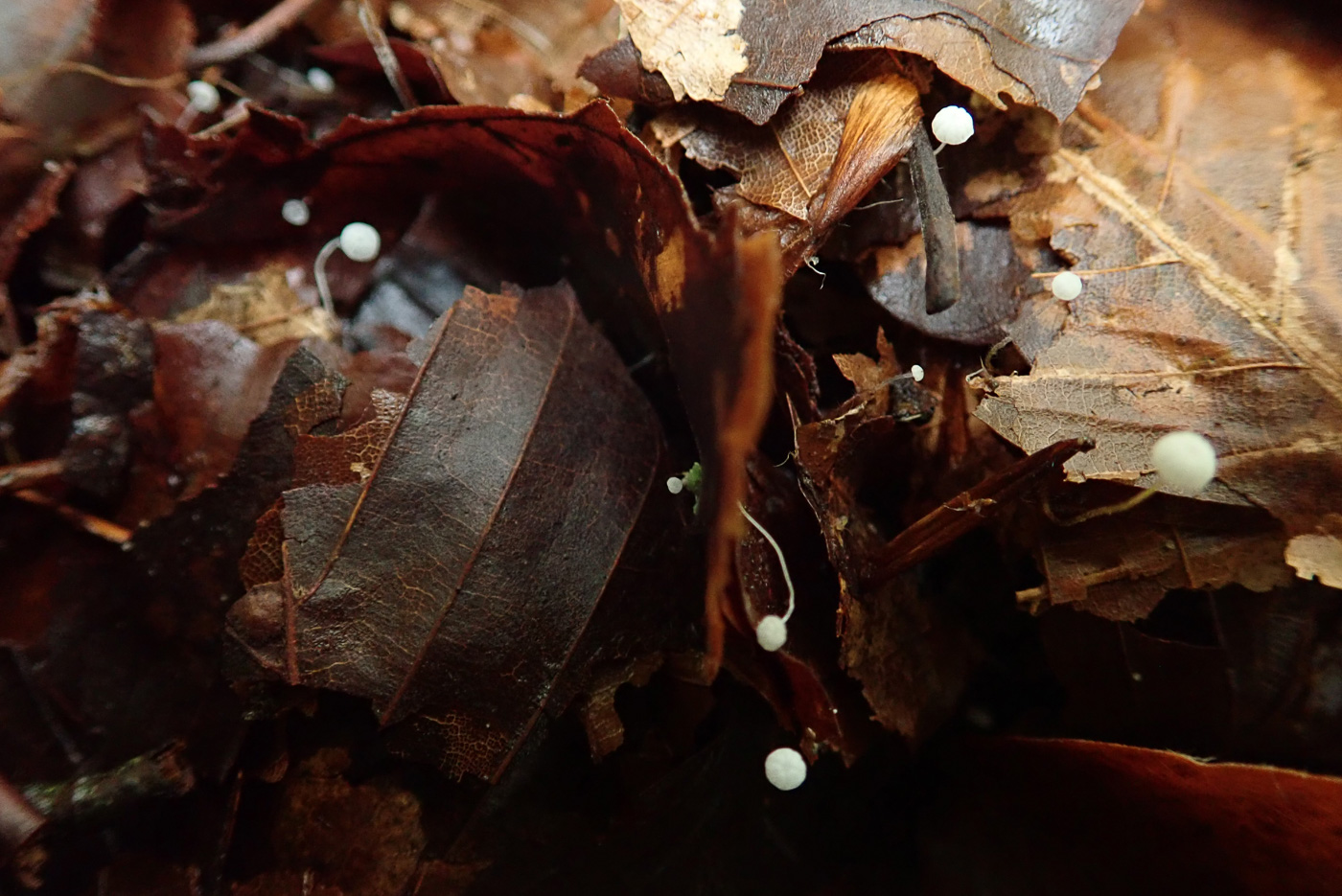 |
October 24th Mycena capillaris (Beechleaf Bonnet)
Penny C. spotted these miniscule mushrooms growing on a fallen Beech leaf in Gussetts Wood. Only found on this substrate it is not uncommon in our Beechwoods but seldom recorded for obvious reasons! Caps are slightly fluted and never get above 3 mm across (these were considerably smaller than that) and stems are extremely thin and fragile (like a capillary). Sometimes found in large numbers on one leaf.
|
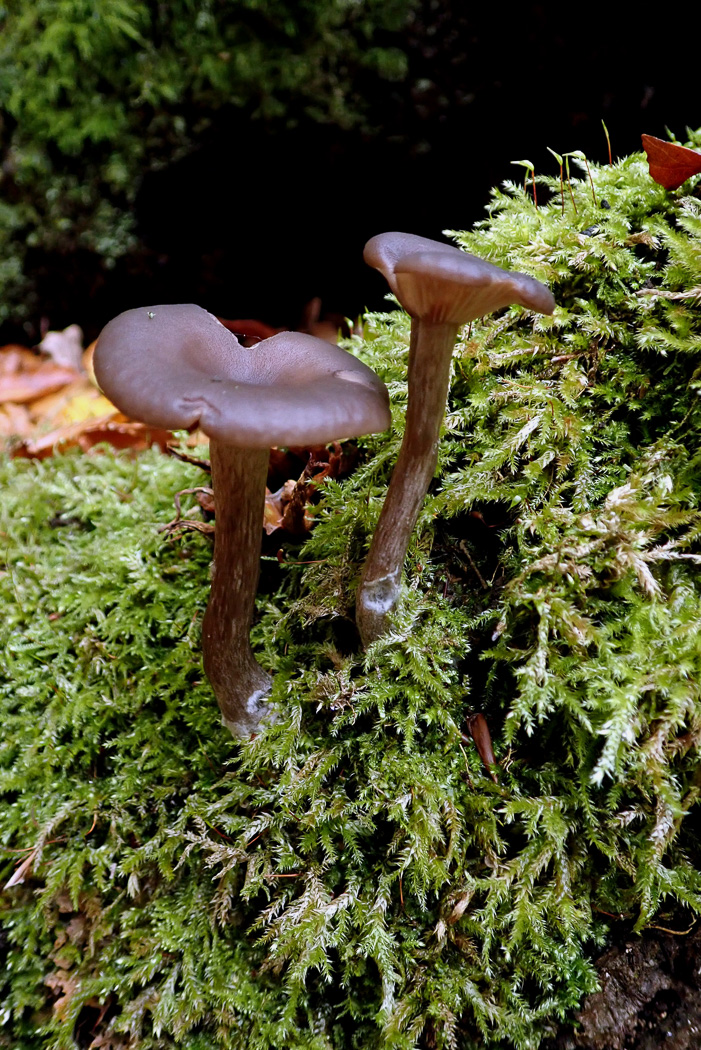
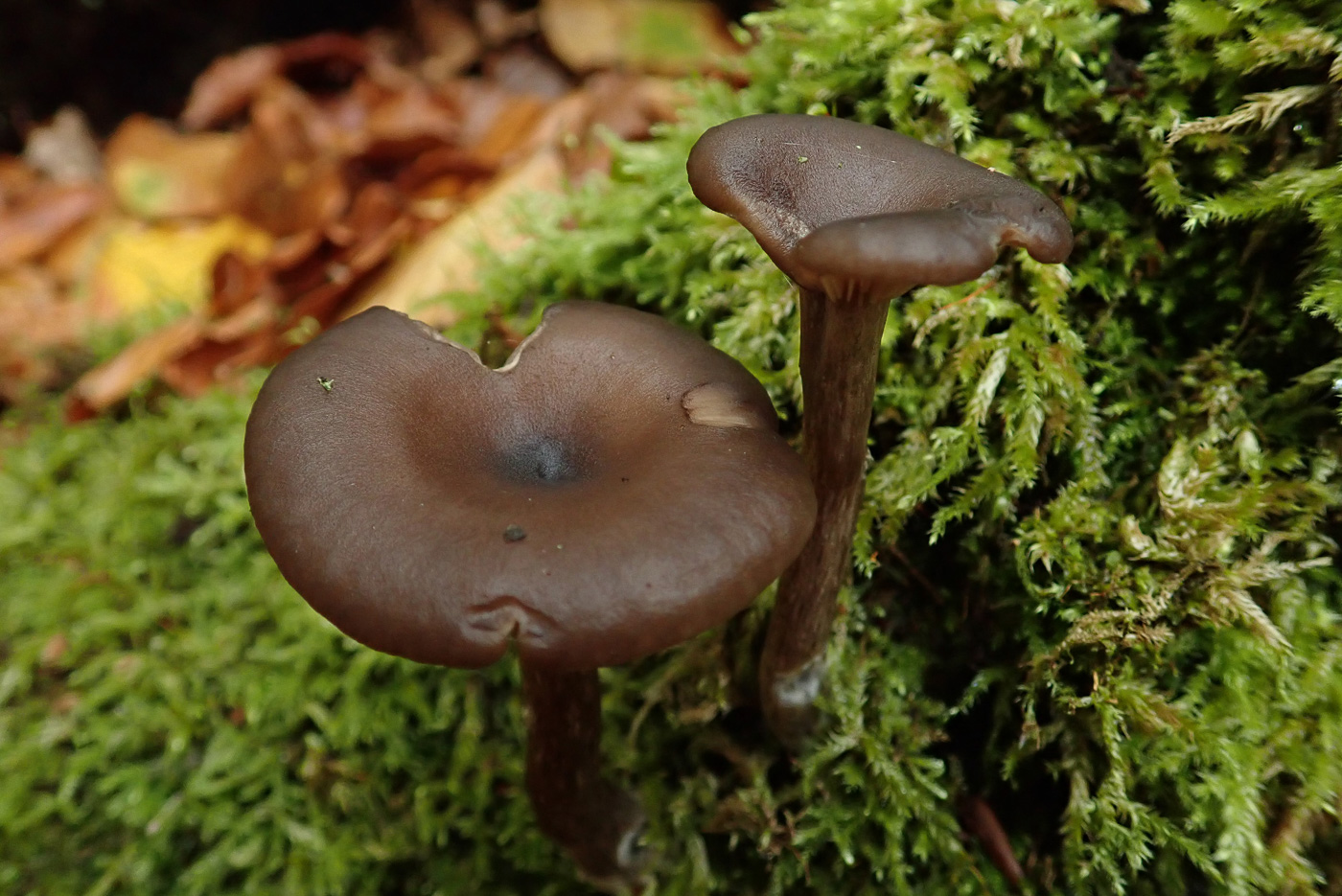
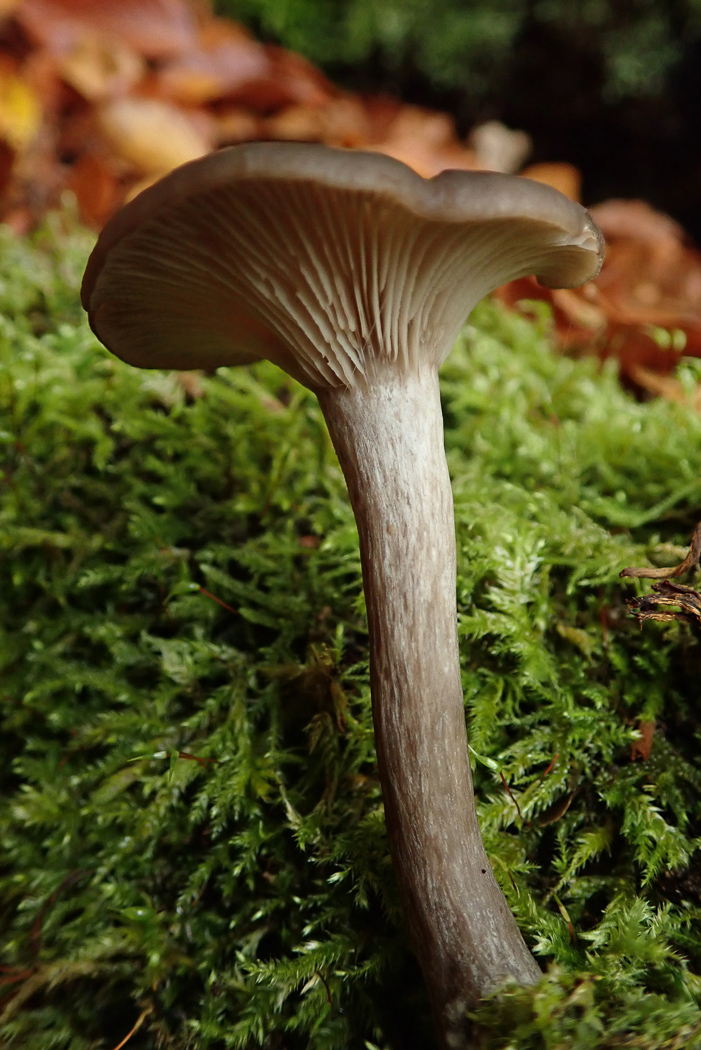 |
October 24th Pseudoclitocybe cyathiformis (Goblet)
Penny C. noticed these two fruit bodies growing in moss on a deciduous stump in Gussetts Wood. This is a late season fruiter and is normally found in soil, often in grassy areas rather than woodland, but the dark grey shiny cap and distinctive shape are diagnostic and make it an easy species to recognise.
|
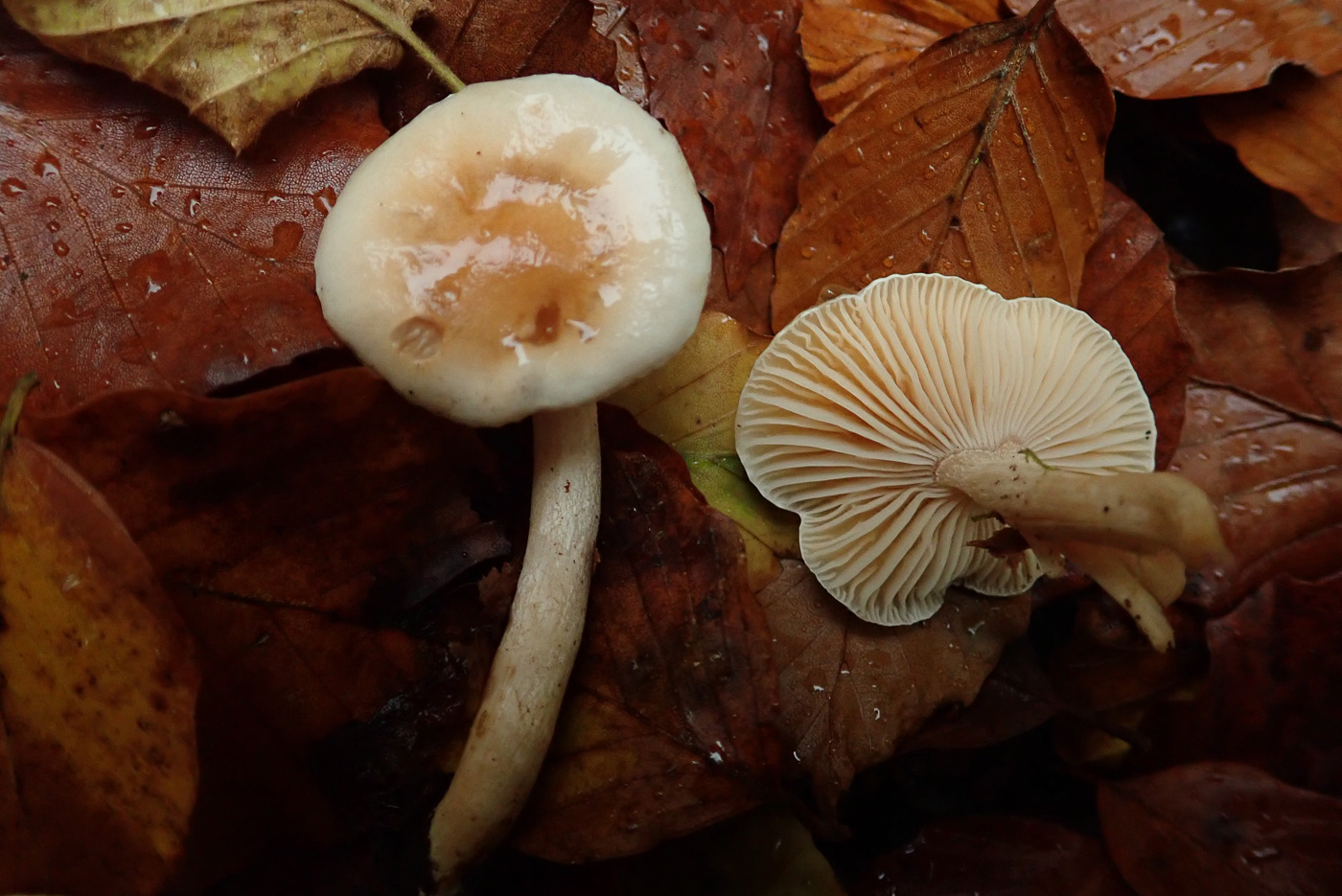
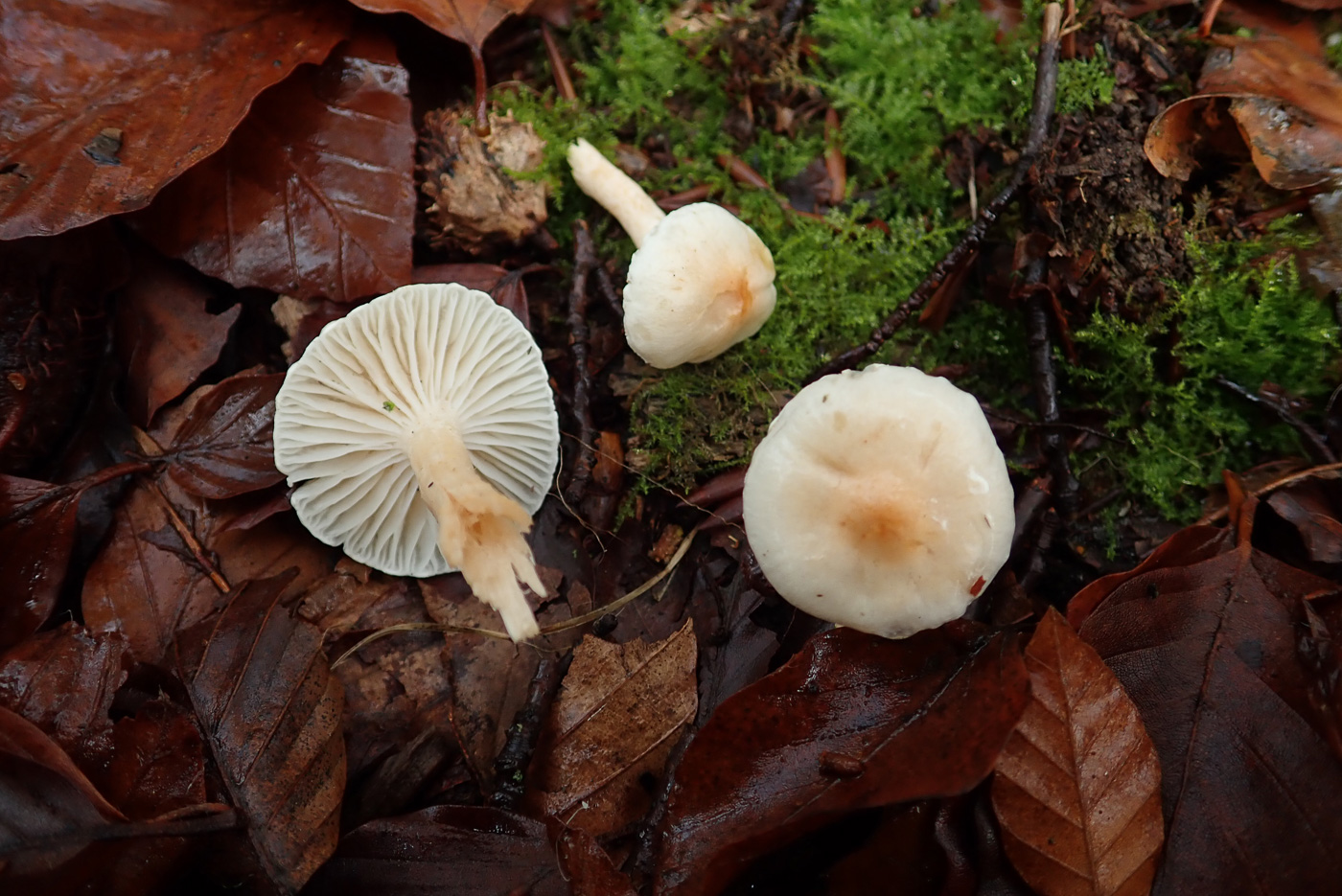 |
October 24th Hygrophorus unicolor (Twotone Woodwax)
Paul C. found these two fruitbodies in Beech litter in Gussetts Wood. Far less common than the very slimy white H. eburneus (see photo dated Oct 10) which was also much in evidence here today, this species also has a sticky cap but the stem is dry and the colours very different with a subtle pink peach tone to the entire fruitbody except for the darker orange-brown cap centre. Like H. eburneus it is found under Beech. Photo 2 is of a further collection from the same site made on Nov 5th.
|
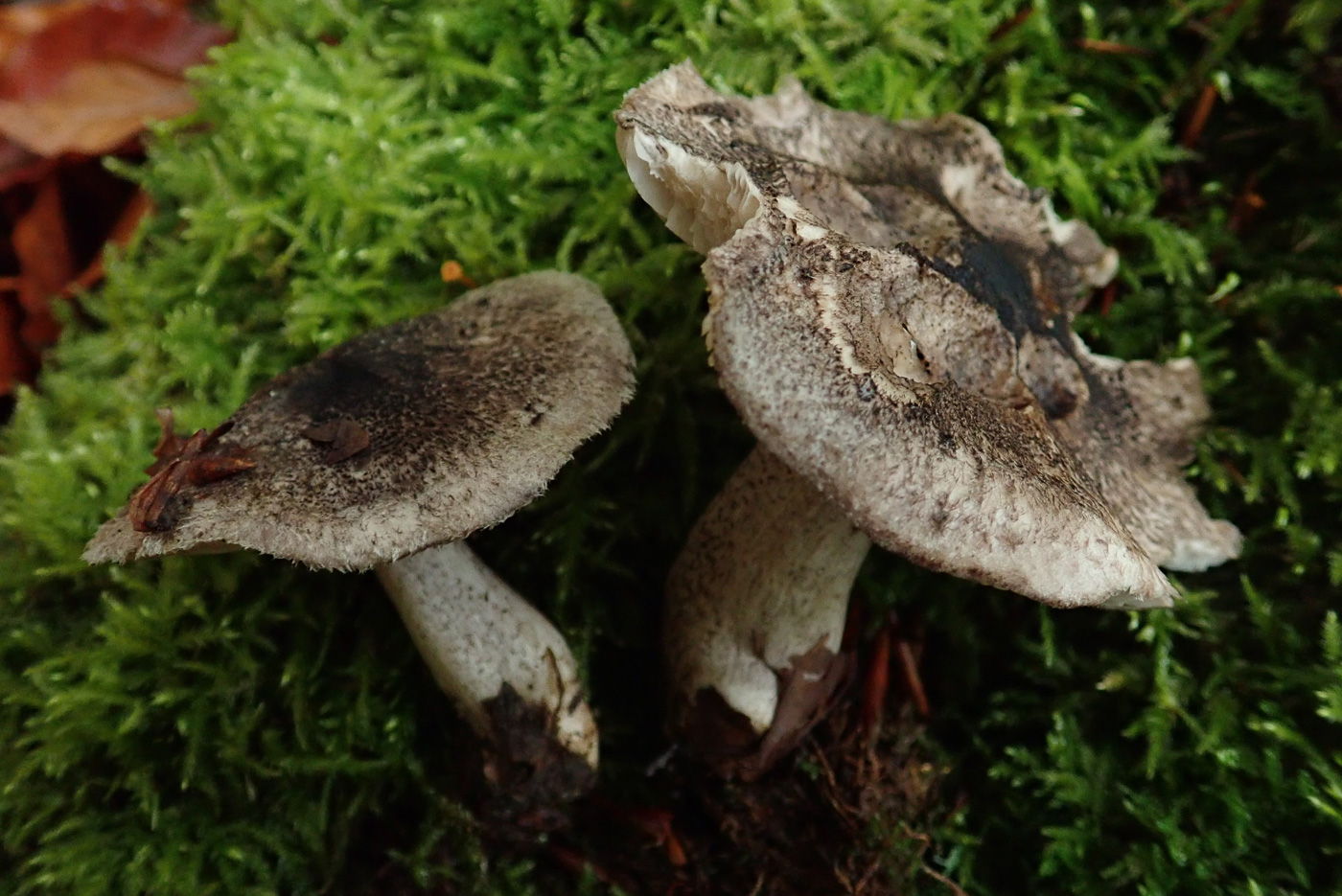
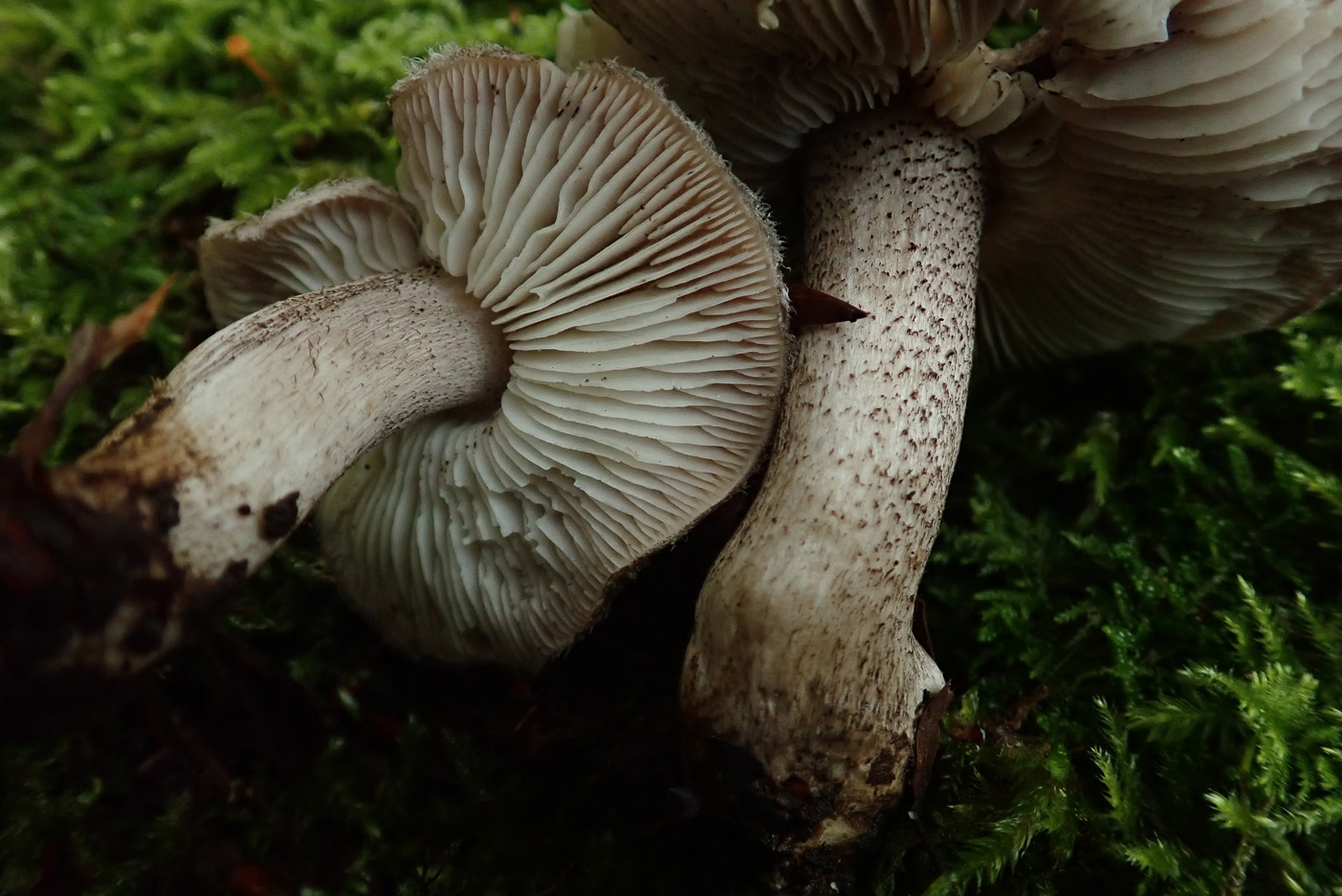 |
October 24th Tricholoma squarrulosum (Dark Scaled Knight)
Paul C. found this pair under Beech in Gussetts Wood. One of many grey-capped Knights, this occasional species is often confused with the very similar T. atrosquamosum which also has a dark scaly cap, almost black at the centre. However, the black stem scales seen here convinced Penny C. that it was not that species which has a shiny stem, also the Beech habitat is typical for this species.
|
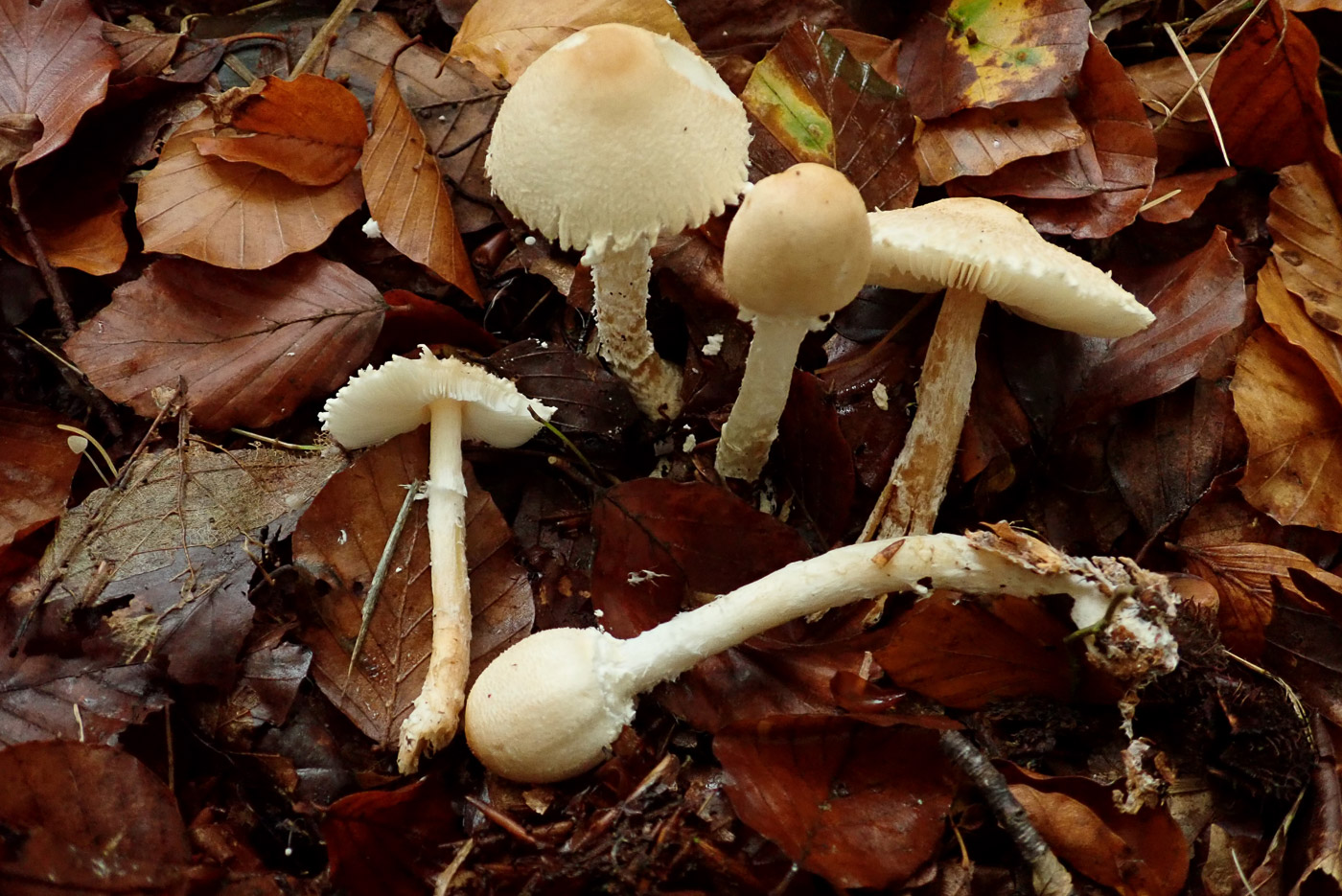 |
October 24th Lepiota oreadiformis (a Dapperling with no common name) 
Paul and Penny C. found good numbers of this pretty medium-sized Lepiota in litter in Gussetts Wood. The species name suggests that it looks similar to Marasmius oreades (Fairy Ring Champignon), maybe because it occurs in grassland - like that species - as well as in woodland. It is a similar size to L. magnispora (see photo dated Oct 22) but is much paler and much less scaly but has a similar floccose cap margin. The stem markings are also paler. Both species have the unpleasant rubbery smell like L. cristata.
|
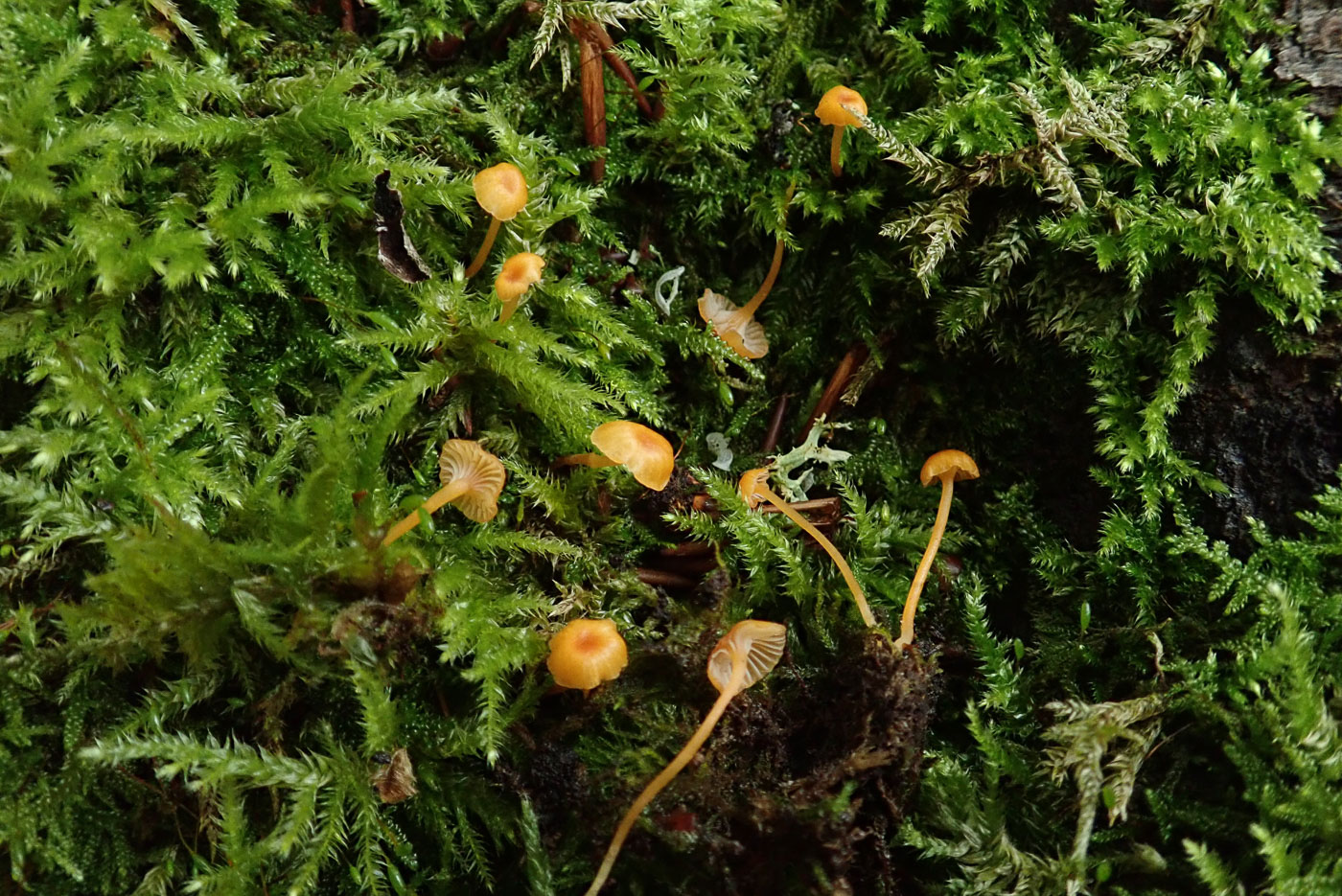
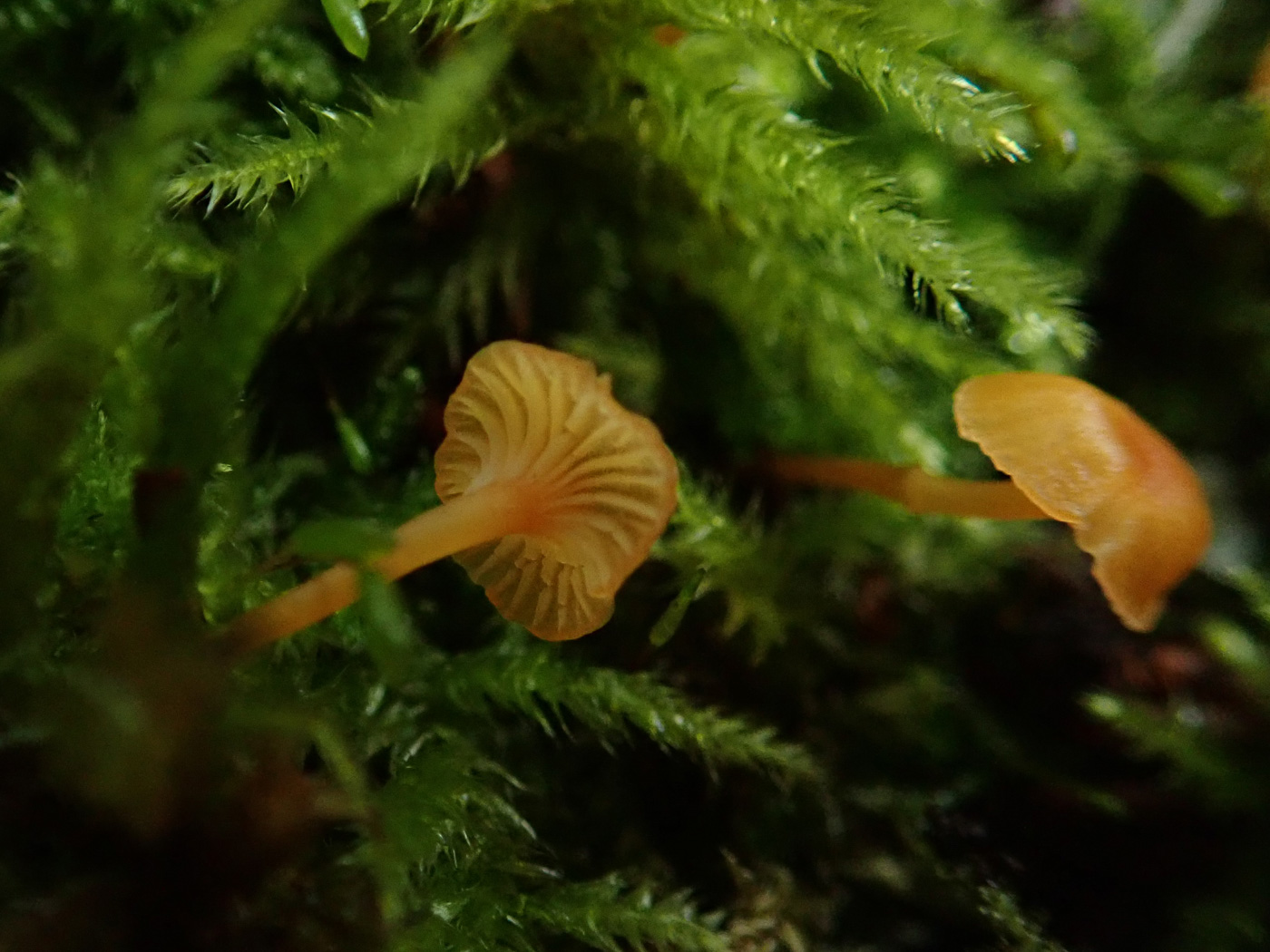 |
October 24th Rickenella fibula (Orange Mosscap)
Penny C. found these young and tiny fruit bodies just emerging though the moss on a stump in Gussetts Wood. A common species always found in moss, it looks like a small orange-capped Mycena (Bonnet) but has strongly decurrent and rather widely spaced gills (best seen with a hand lens). Today's specimens were well under 5 mm across but it can get to more than 1 cm across. There is another much less common but equally small species called R. swartzii which also grows in moss but is greyish with a dark purplish centre and has greyish decurrent gills. Worth looking out for.
|
October 23rd 2020
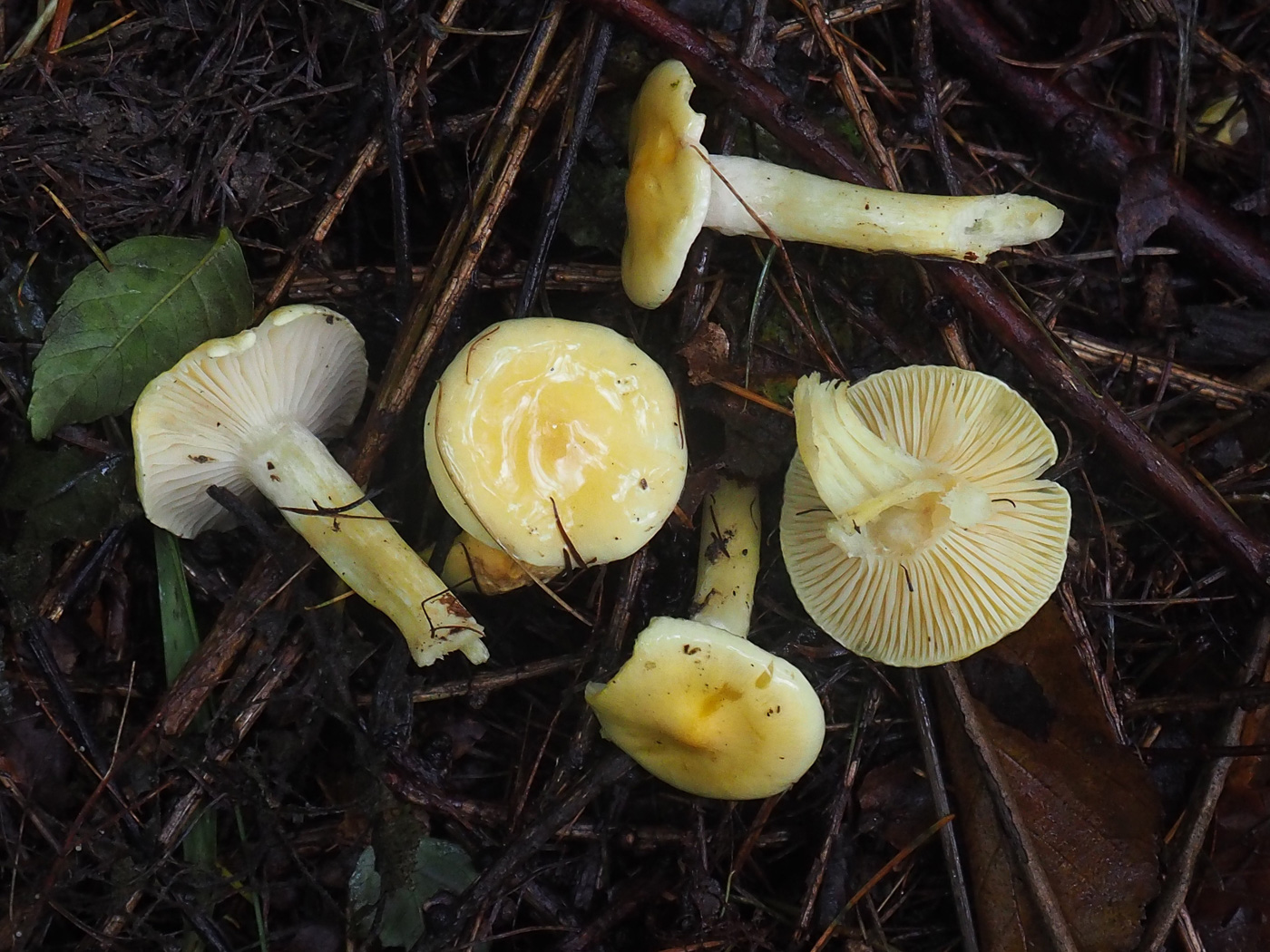 |
October 23rd Hygrophorus lucorum (Larch Woodwax)
John Catterson found good numbers of this uncommon species under Larch in a plantation near Tinkers Wood where he remembered it from last year. Like most species of Woodwax this is a late season fruiter and host specific to Larch, but fruiting seems to be very unpredictable with both good years and bad. So this is one worth looking out for now if you have that tree nearby. Any sticky yellow-capped mushroom with widely spaced slightly decurrent gills is likely to be this.
|
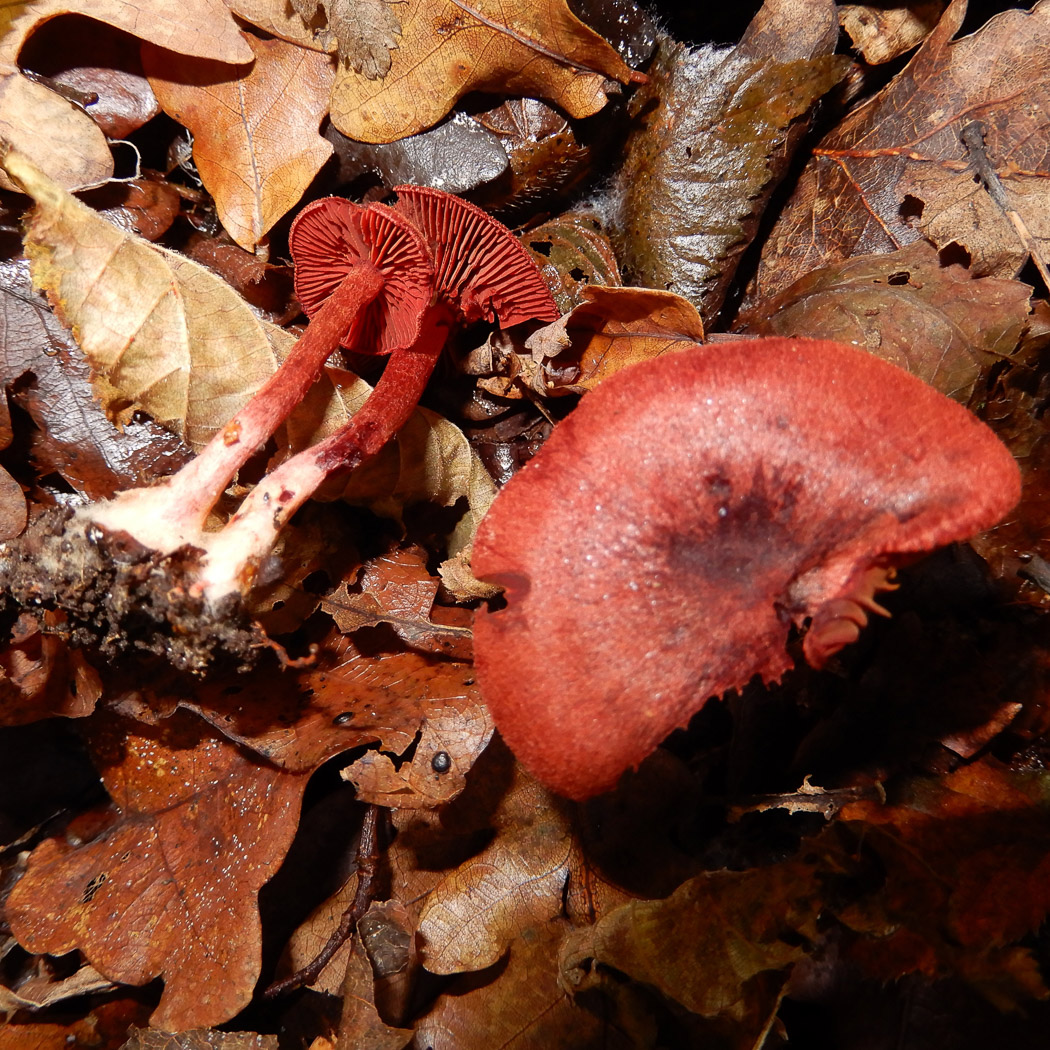 |
October 23rd Cortinarius puniceus (Bloodred Webcap)
Margaret Bolton found this distinctive and quite uncommon Webcap under Oak in Moorend Common. Compared to C. semisanguineus (see photo dated Oct 19) this species sports not only brilliant red gills but cap and stem as well! Up till now we've been recording this species of deciduous woods as C. sanguineus, but recent DNA research shows that that species only grows under Pine and what we find under Oak and Beech is C. puniceus, for which we have only one county record! We have to assume, therefore, that past records of C. sanguineus are likely to be this species unless found under Pine.
|
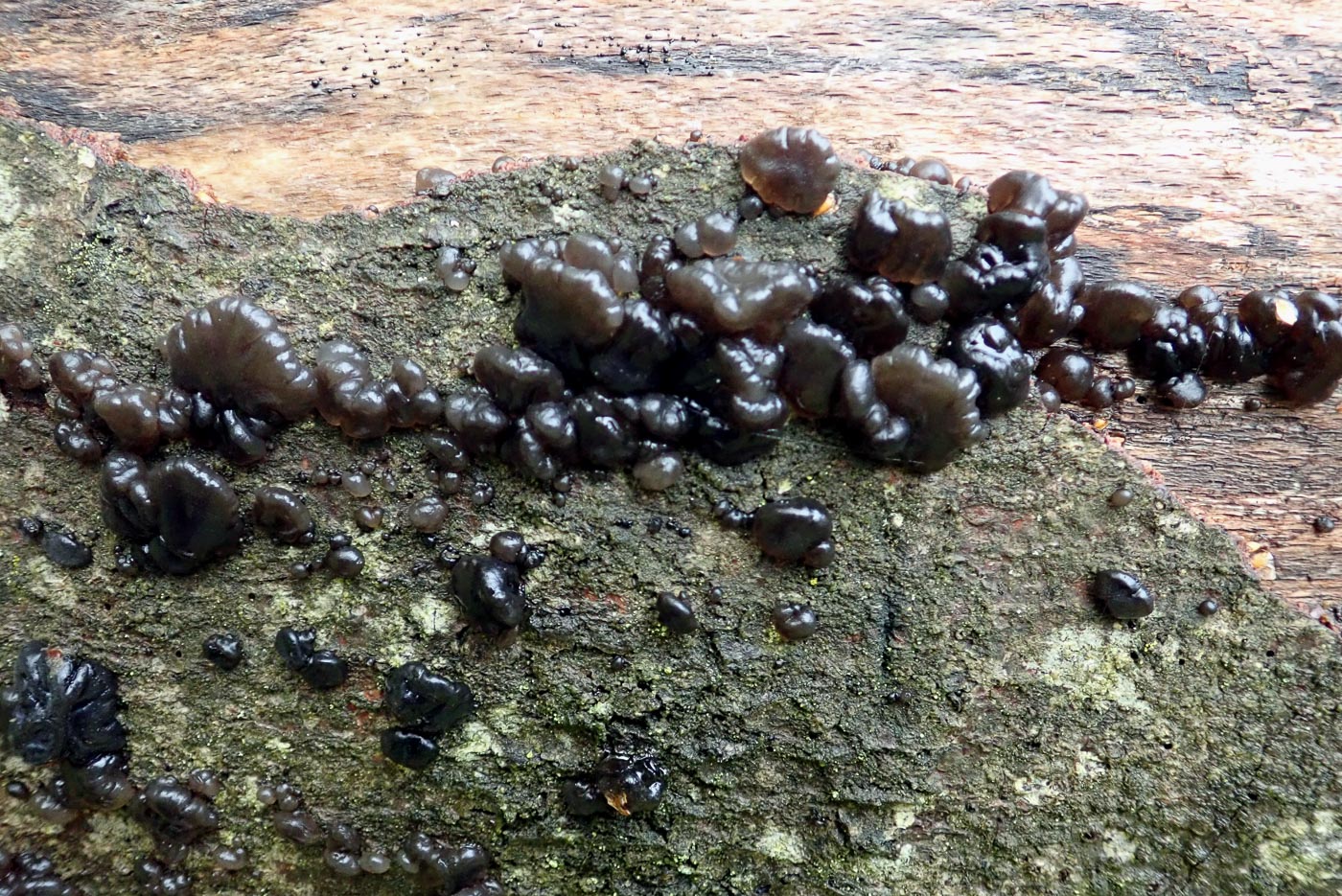
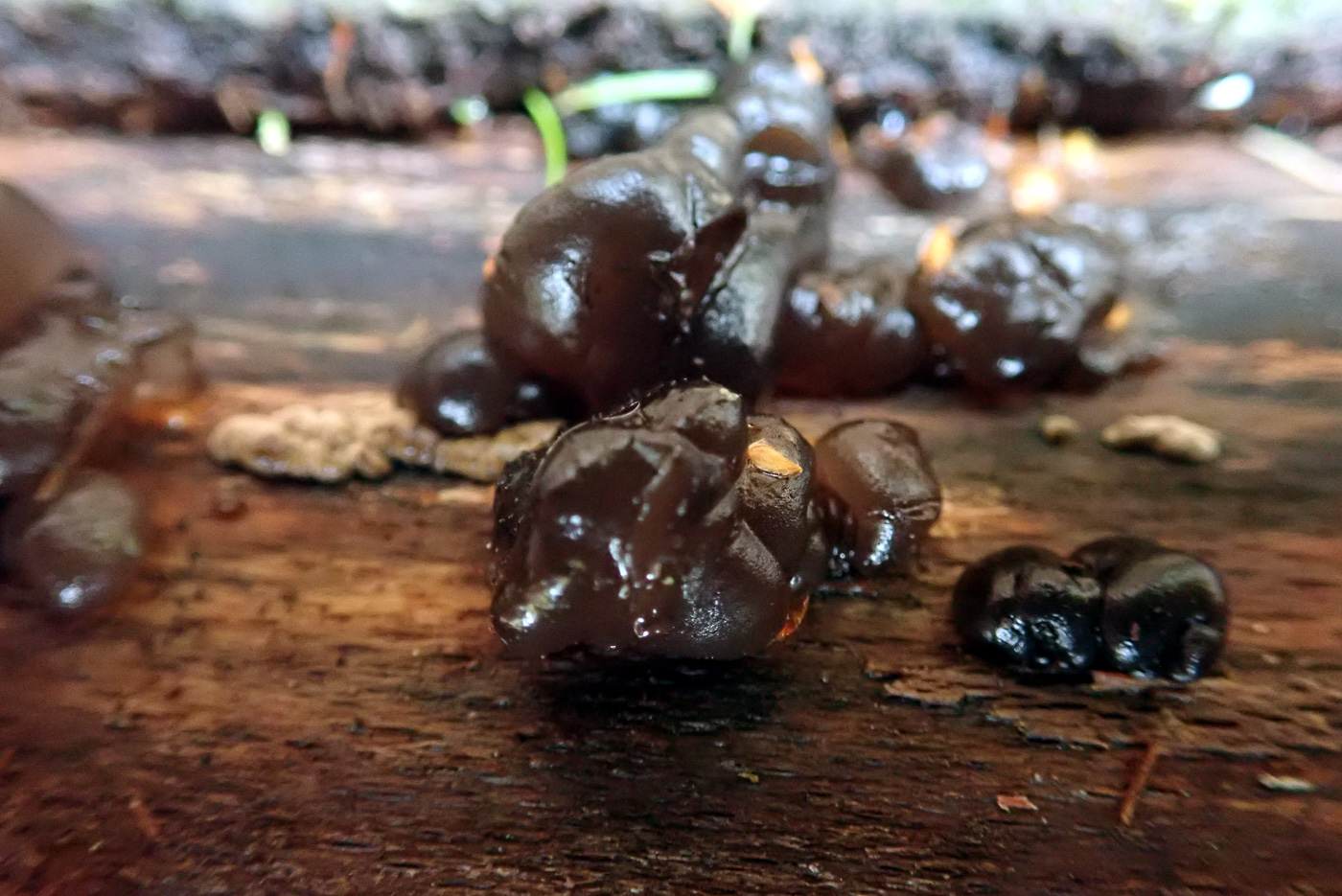 |
October 23rd Exidia glandulosa (Witches' Butter)
Penny C. found a large fallen Beech trunk liberally covered with this species in Ashridge. A common species on fallen rotting deciduous wood, this is one of our jelly fungi and forms colonies of dark brown to black slightly frilly soft gelatinous blobs. There are other species of Exidia though this is the commonest being this colour. E. nucleata is equally common but is more or less colourless to white and forms smaller smoother blobs. See photos of that species dated Nov 5th.
|
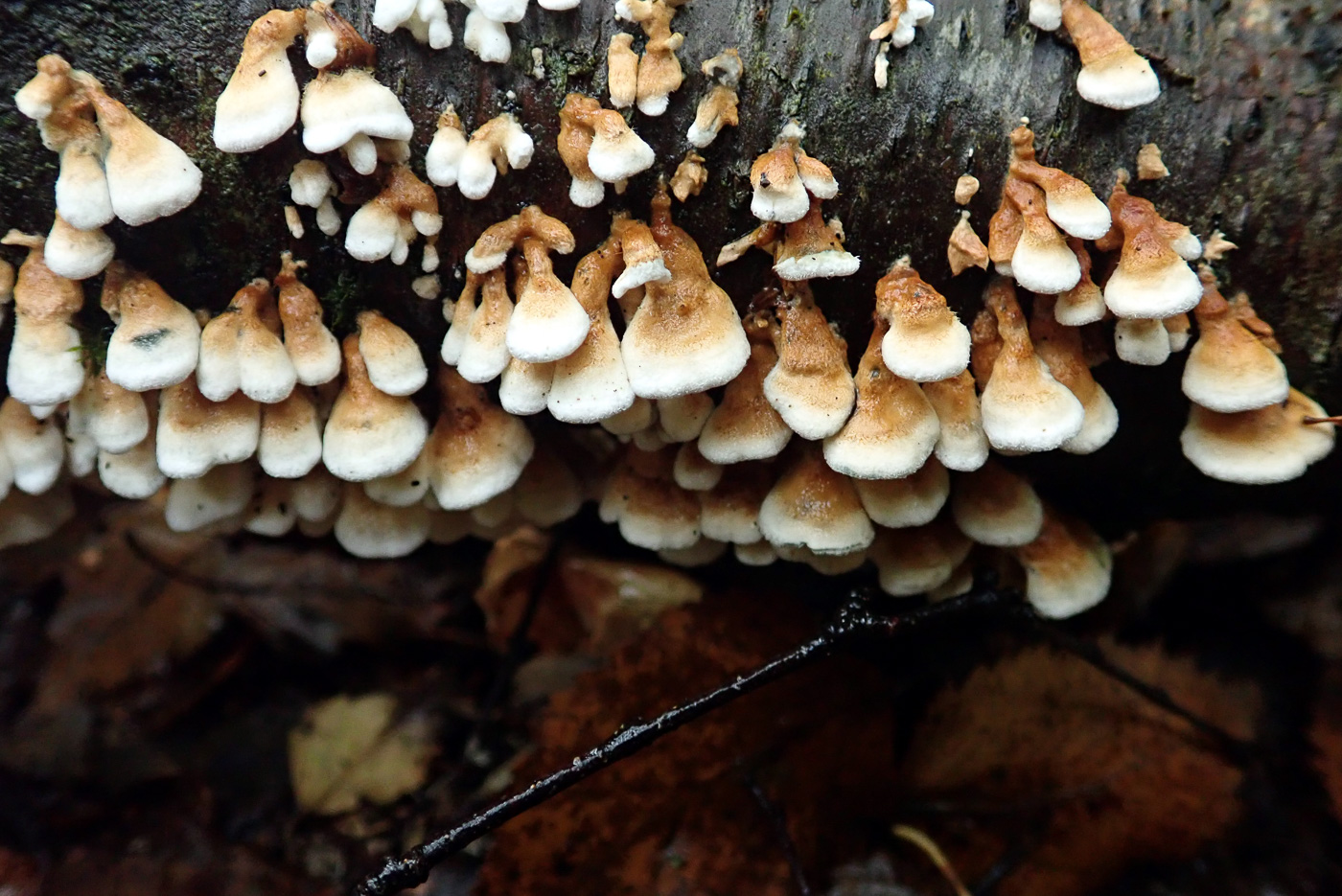
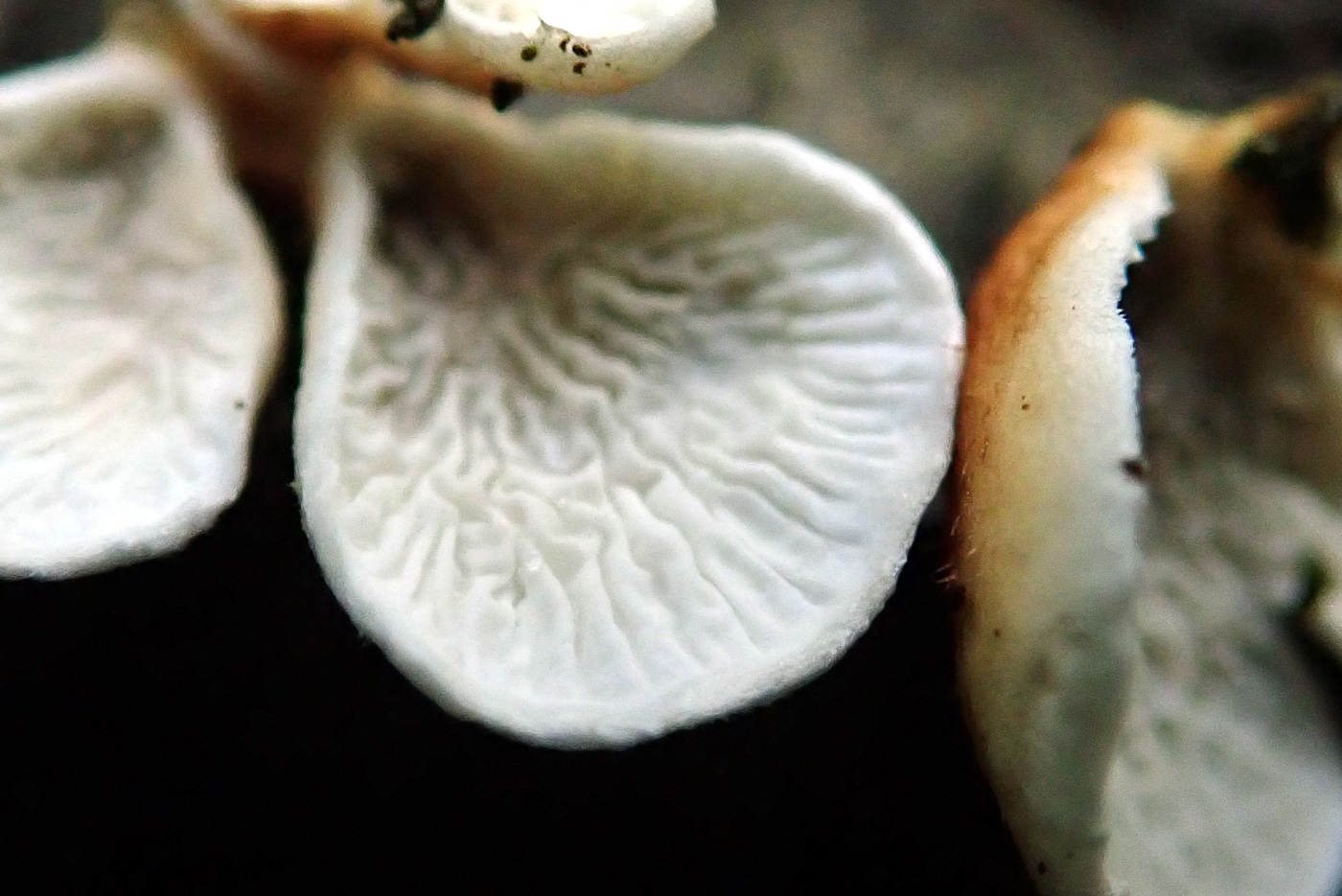 |
October 23rd Plicatura crispa (Crimped Gill)
Penny C. found this colony of tiny soft brackets on a fallen Birch branch in Ashridge. Not unlike young Stereum hirsutum which is much the same colour and forms similar crowded colonies on fallen deciduous wood, this species is flabby and soft when young, as here, and easily removed from the substrate. Once you look at the underside you know you have something different from Stereum (which is entirely smooth underneath). Apologies for my very blurred photo 2, but at least it shows the diagnostic white crimped gill-like structure. Each single fruitbody was only about 1 cm across here but they will grow to twice that size and become hard with age. Considered rare a few years ago the species seems to be becoming relatively common in the south in recent years.
|
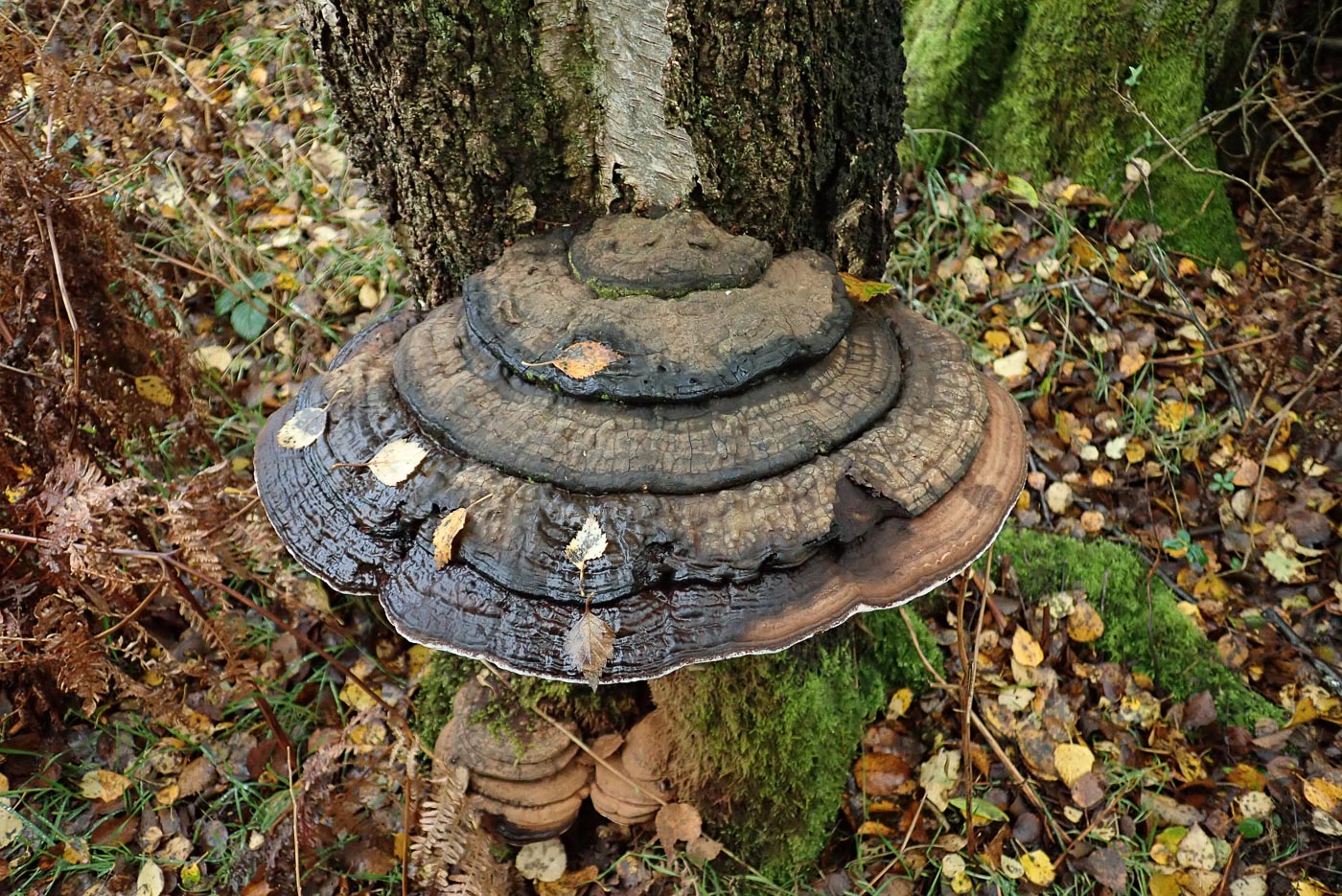
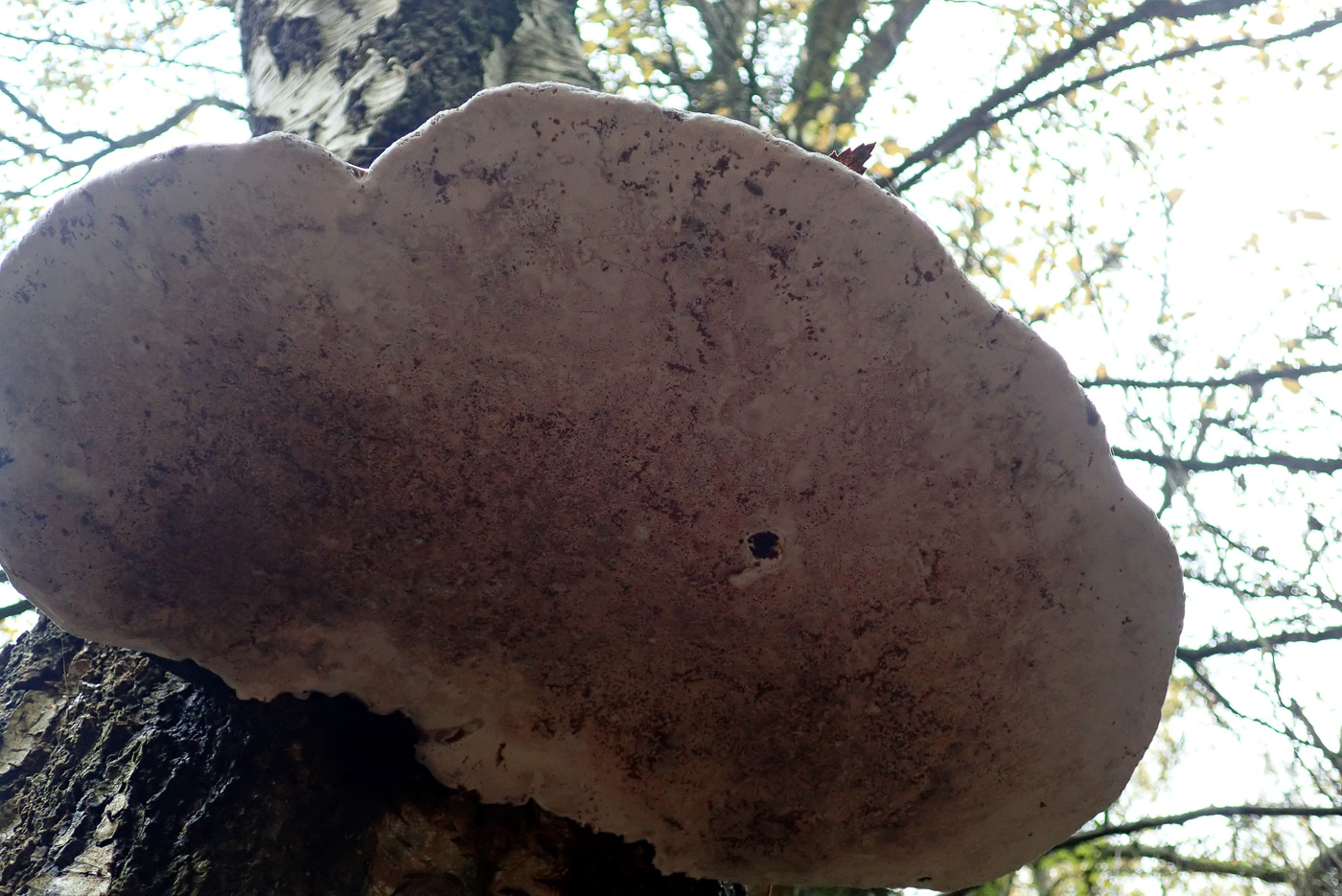 |
October 23rd Ganoderma australe (Southern Bracket) 
We do have a photo of this species dated Sept 25th but this large bracket, found on a dead Birch trunk in Ashridge by Penny C., clearly shows 5 years of growth. This genus produces perennial brackets and this one was 1 ft across. More brackets of the same fungus can be seen underneath, coloured cocoa brown from the spores dropped from the one above. Rather than damage the specimen by cutting into it, I collected a leaf from below, also liberally coated with spores, in order to check the spore size to confirm this was G. australe rather than its look-alike G. applanatum. Photo 2 shows the pale fine pores underneath.
|
October 22nd 2020
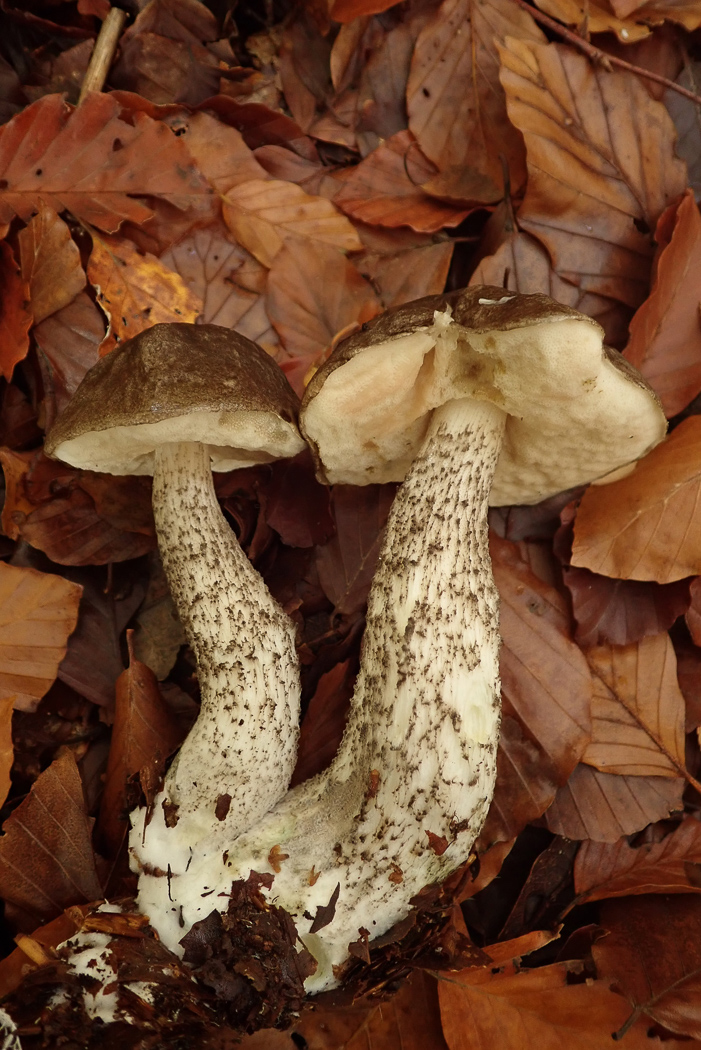
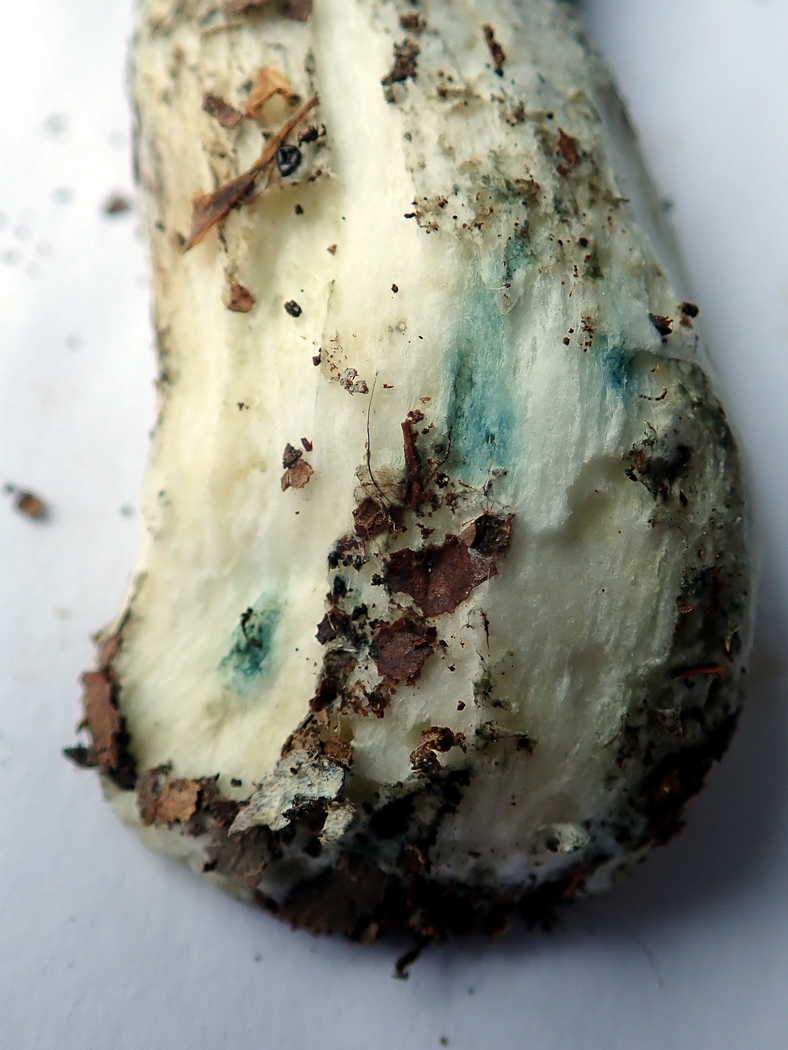 |
October 22nd Leccinum variicolor (Mottled Bolete) 
Paul C. found this pair under Birch in Hodgemoor Woods. Rather a dark capped species of Leccinum with a slightly irregular bumpy surface, it has dark almost black scabers on the stem and tends to develop green patches where damaged at the base. (Photo 2 was taken an hour or so after collection.) As there are other species which also can have these green markings it is necessary to check the cells forming the cap surface to make a positive identification. This is one of the commonest of many species of Leccinum which are host specific to Birch.
|
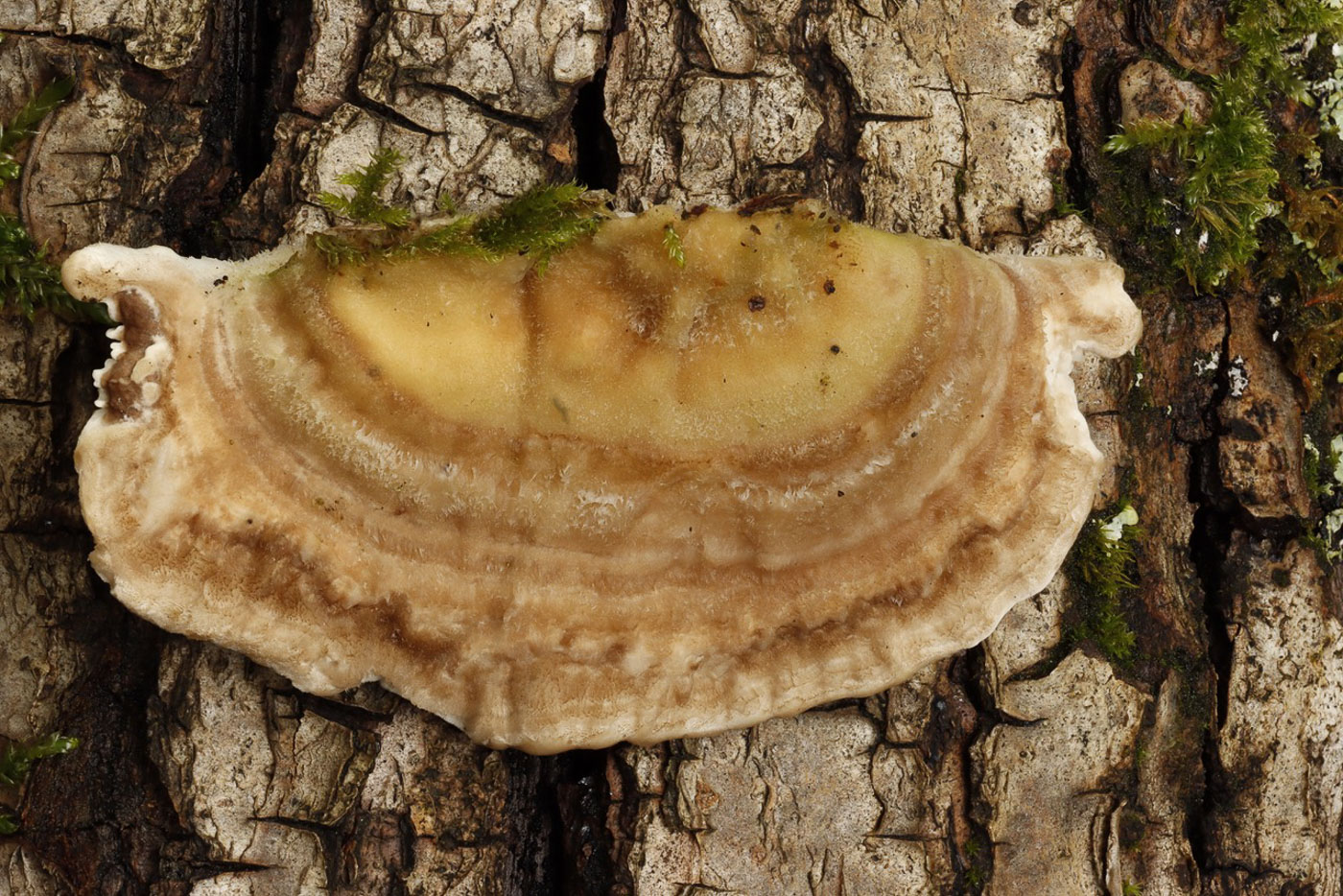
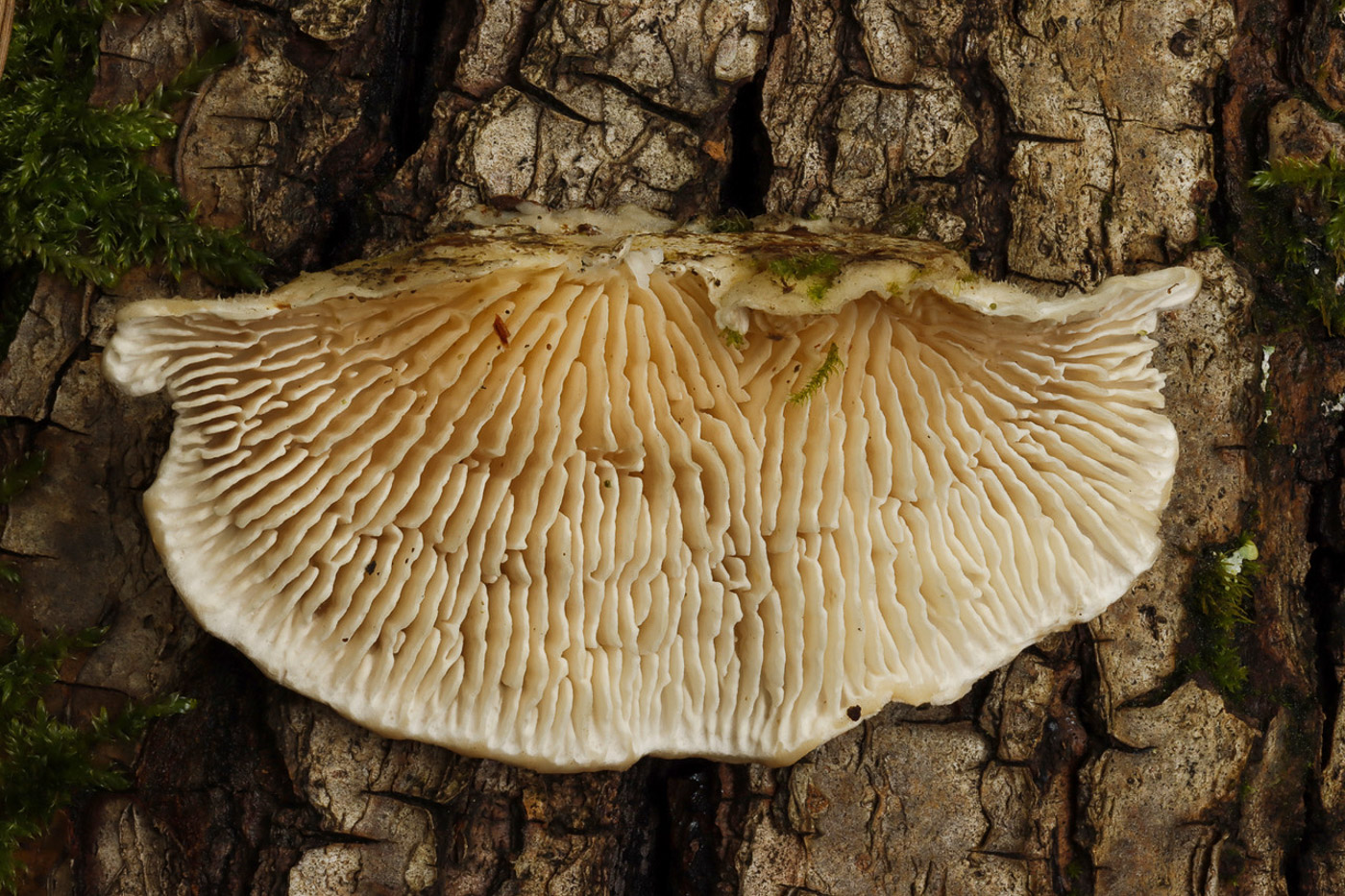 |
October 22nd Lenzites betulinus (Birch Mazegill)
Paul Goby found this bracket on fallen deciduous branch in Naphill Common. This is one of our less common brackets and despite its common name it can be found on deciduous wood other than Birch. It is of medium size, the semicirclular shape and zoning on the top being typical, but it's the underside which is distinctive, having a unique almost gill-like structure. Do not confuse with the Oak Mazegill (which we haven't yet included here) where the underside is clearly maze-like and could not be described as gill-like.
|
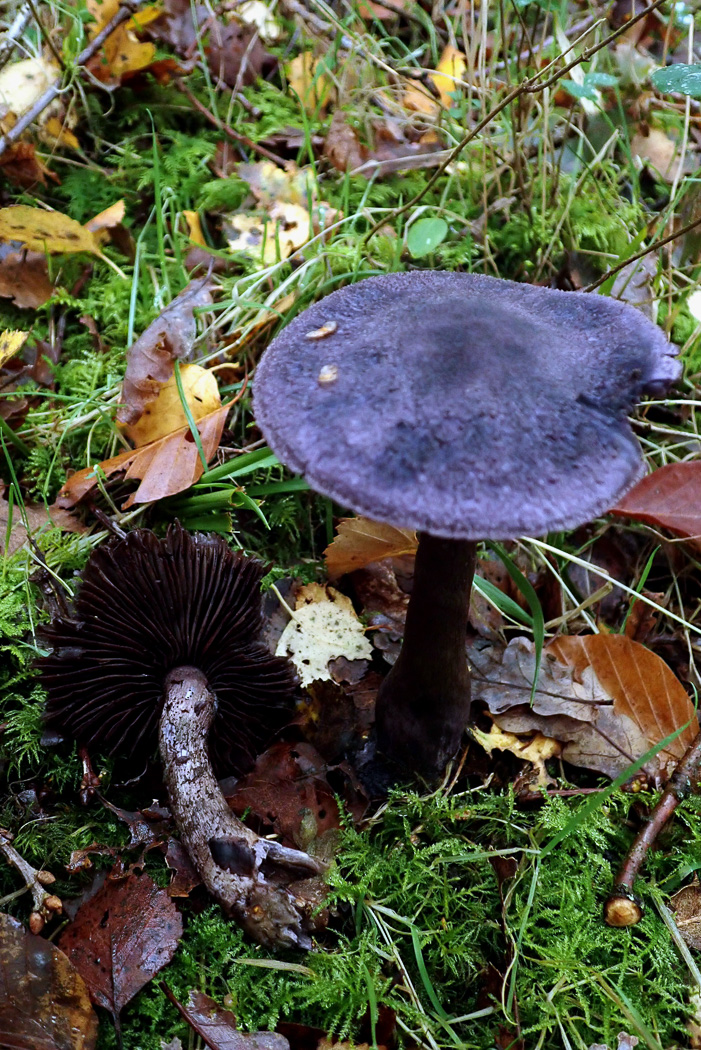
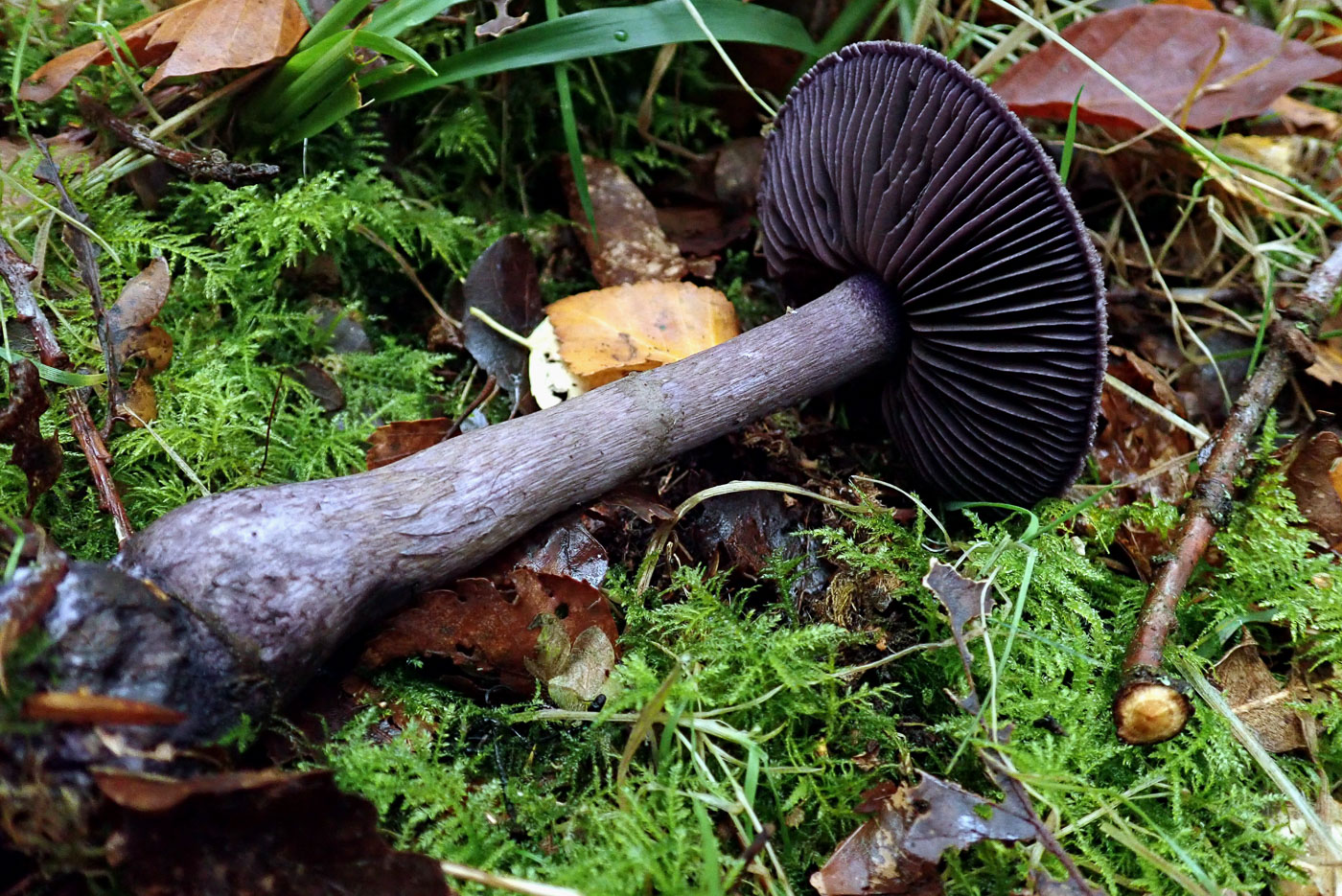
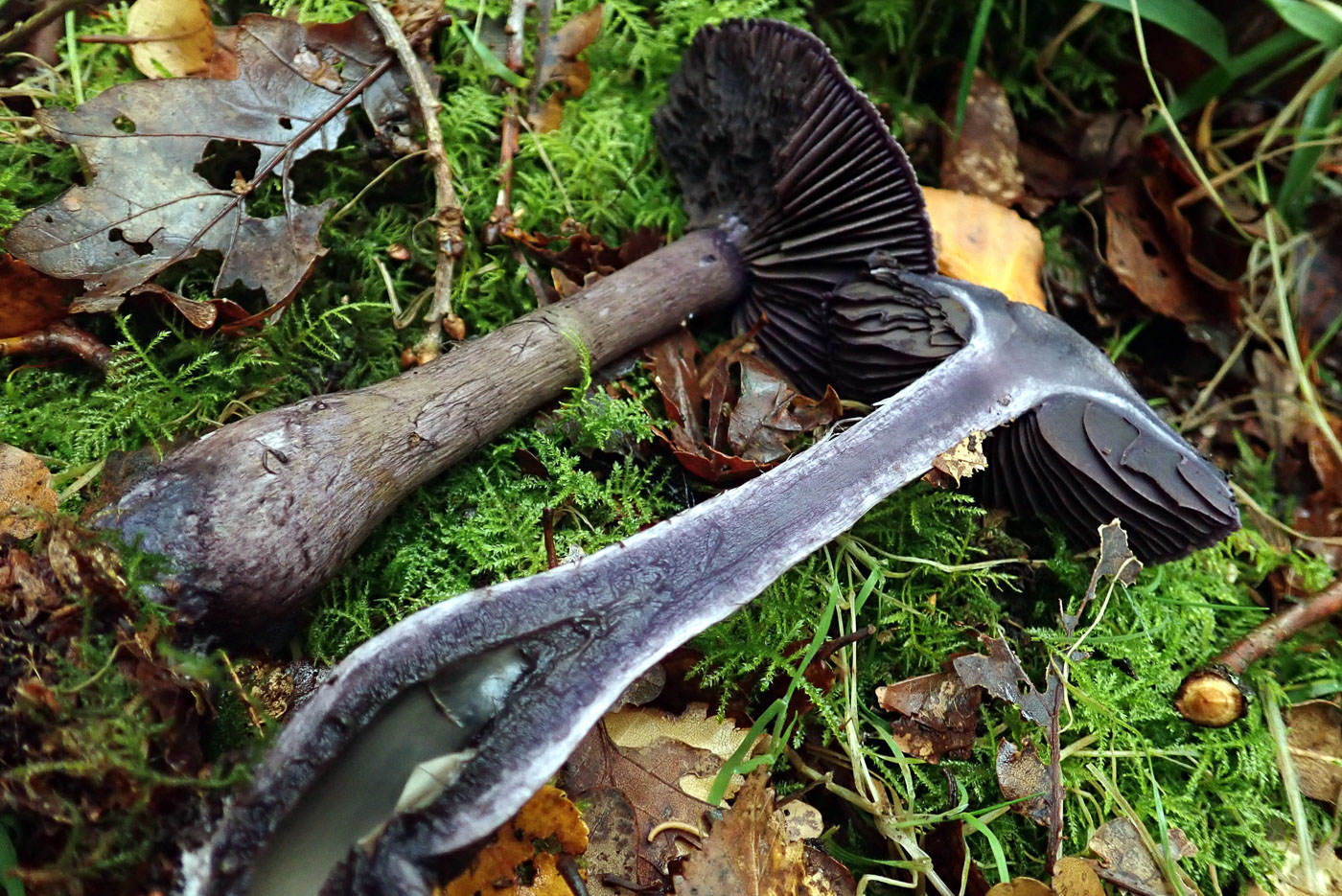 |
October 22nd Cortinarius violaceus (Violet Webcap)
Penny was delighted to come across this stunning species under mixed deciduous trees in Hodgemoor Woods, a site where Paul C. found it 10 years ago almost to the day! This is a rare find and also an easy Webcap to recognise in the field, being entirely deep violet purple - cap, gills and stem, with a dry slightly scaly cap surface and a clavate stem base. Cut in half the flesh is the same dark colour. It is quite a big Webcap and today's was about 12 cms tall, a species of deciduous woodland usually under Beech or Poplar (not present today).
|
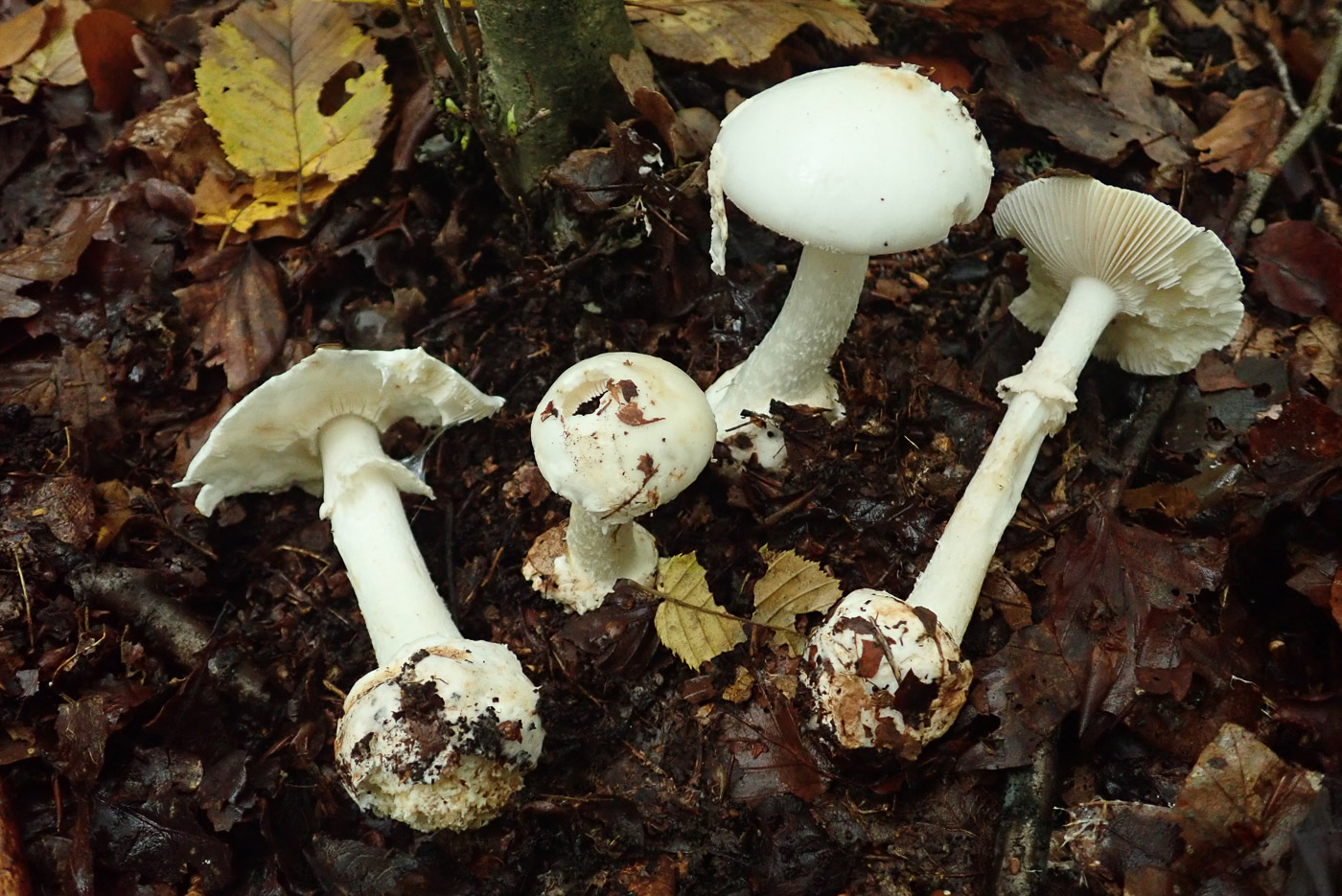 |
October 22nd Amanita citrina var. alba (False Deathcap)
Paul C. found this collection under mixed deciduous trees in Hodgemoor Woods (photo Penny C.). This is the Amanita commonly misnamed as A. virosa (Destroying Angel)! Earlier we did have the genuine article, new to the county and from this same site (see photo and notes dated Sept 18) though it was only an immature specimen unfortunately. However, this white variety of A. citrina has all the same features as the much commoner yellow-capped variety (see photo also dated Sept 18) including the smell of potato peelings and the round bulblike volva at the stem base - both features distinctly different from those found in A. virosa.
|
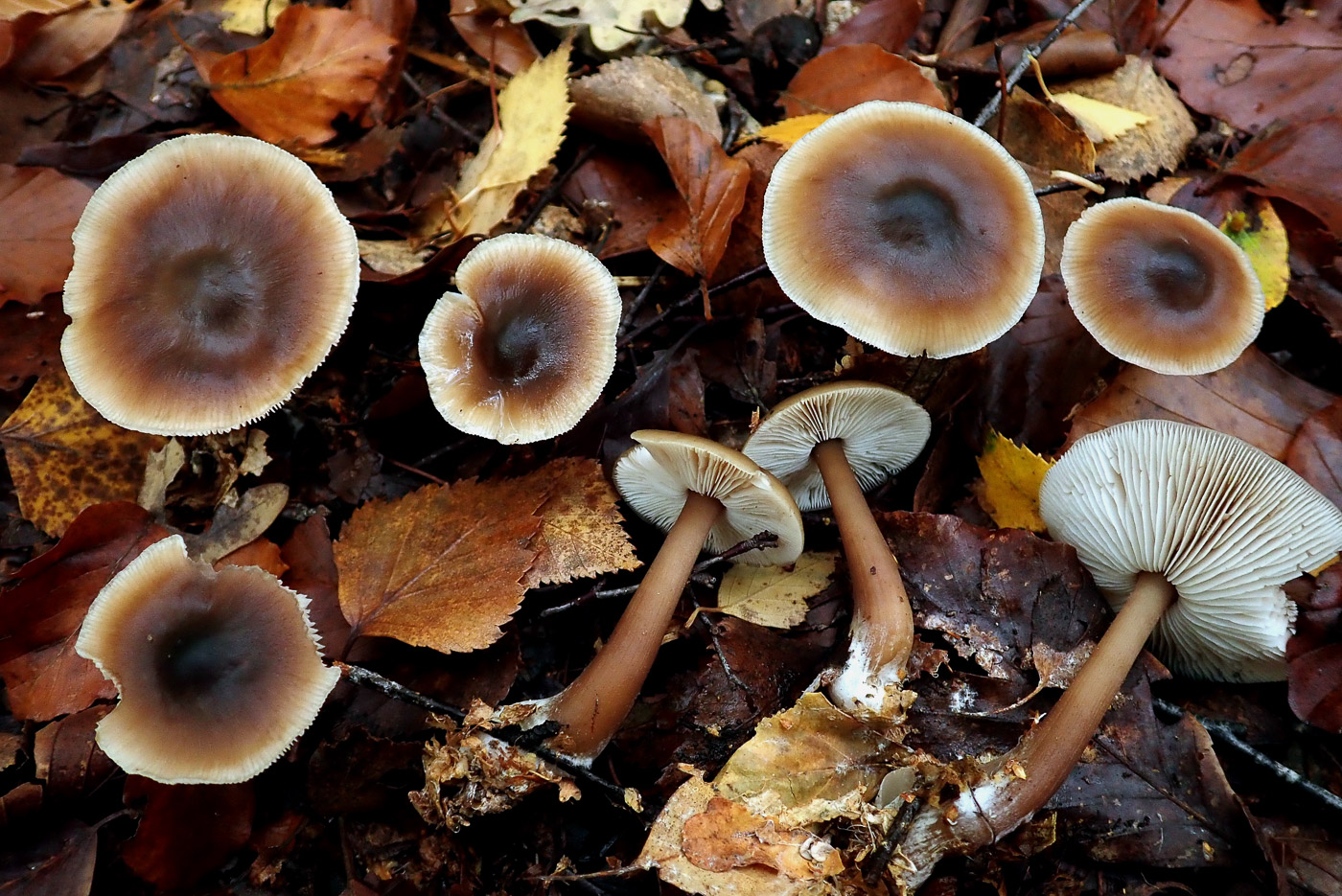
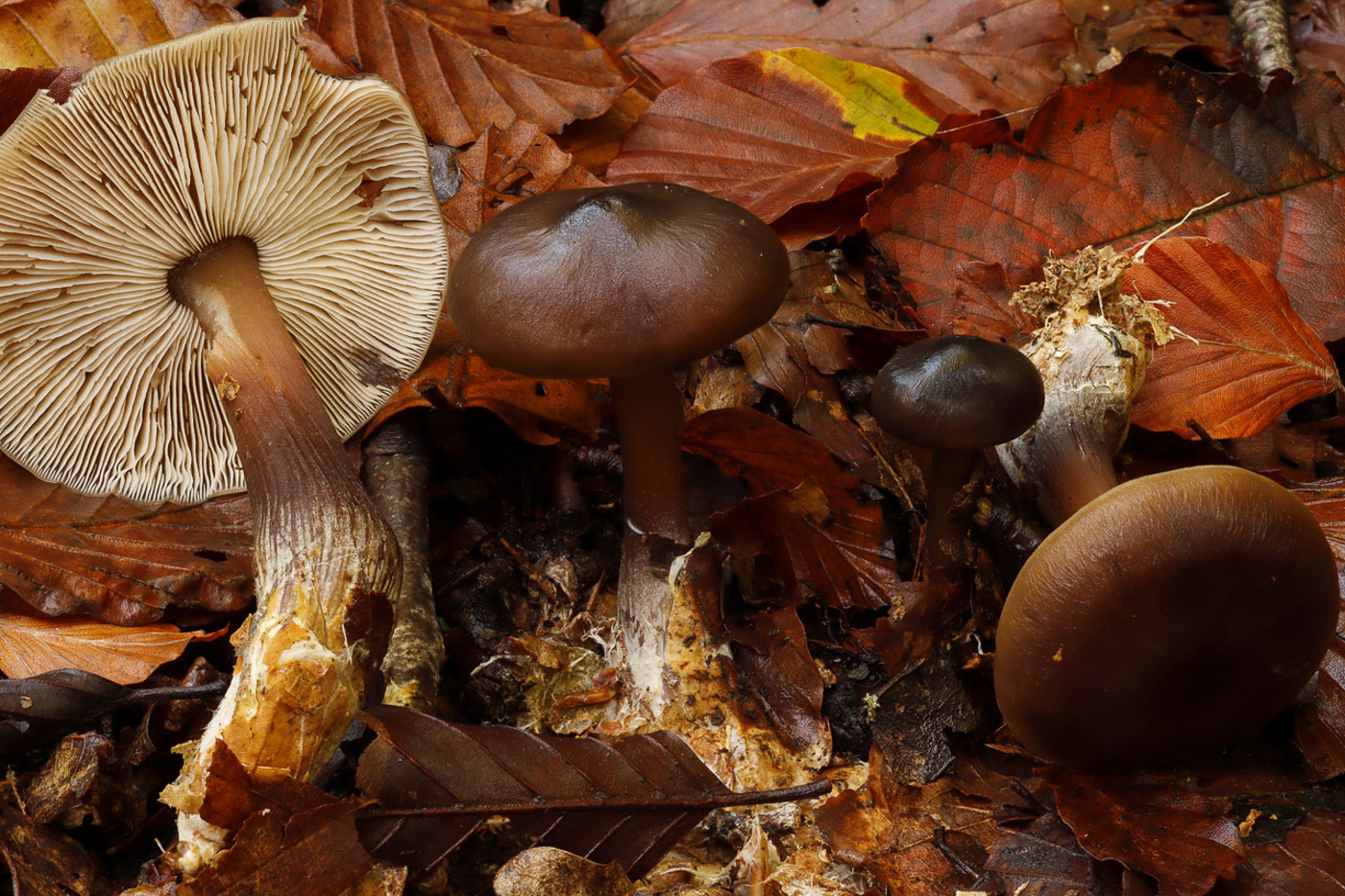 |
October 22nd Rhodocollybia butyracea (Butter Cap)
We do already have this species, dated Oct 13th, but the photo is of rather pale washed out material. Today both Paul Goby in Naphill Common and Paul and Penny in Hodgemoor Woods found beautiful fresh collections showing the features well. Photo 1 from Hodgemoor shows the smooth greasy caps which have a central umbo and are paler towards the margin; photo 2 from Naphill shows the pale crowded gills contrasting with the darker hollow tapering stem which often has a purplish tint. This is a very common and very variable species and often fools people but the underside view is usually diagnostic. Tip: feel the surface of the cap with your finger for the greasy buttery texture.
|
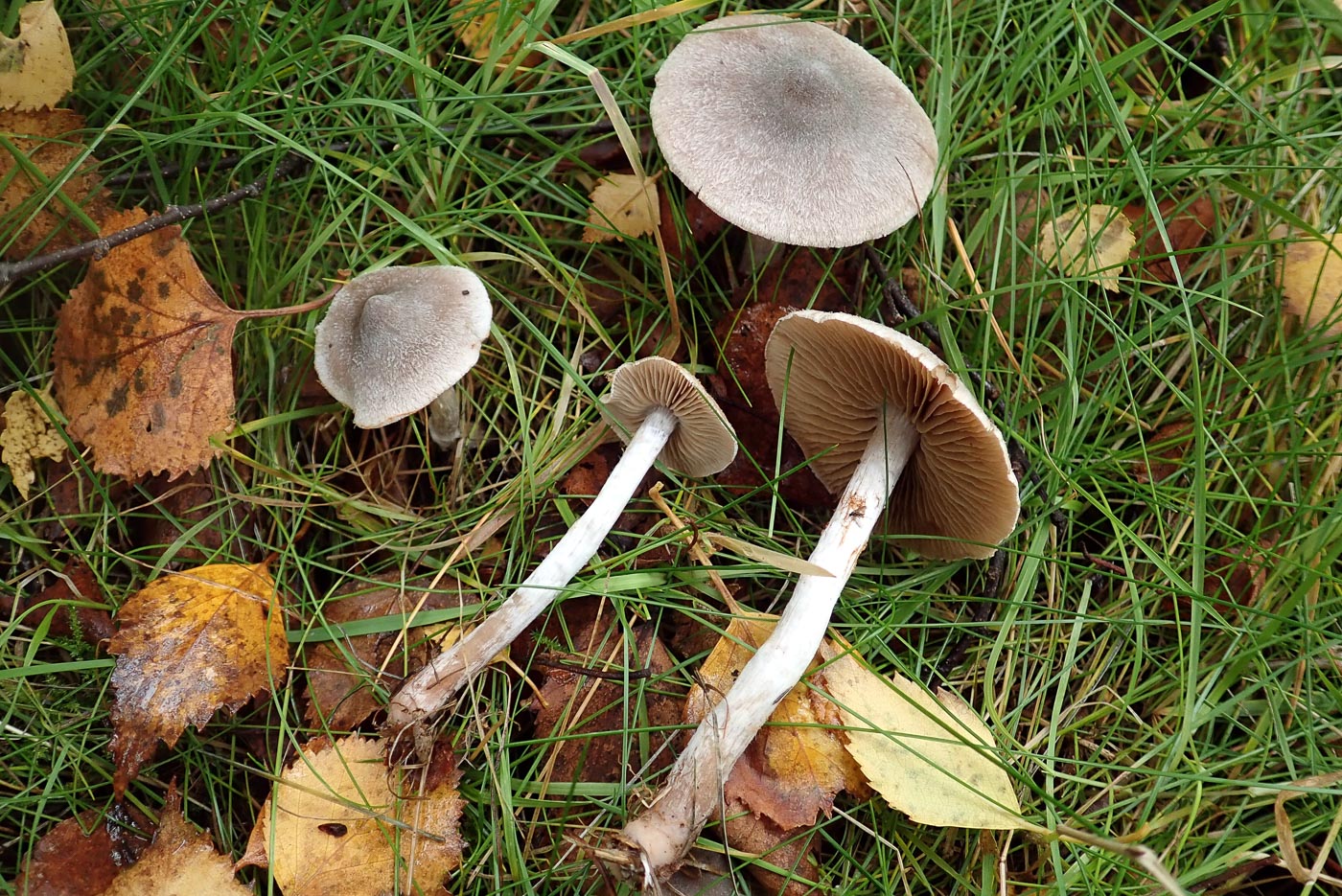
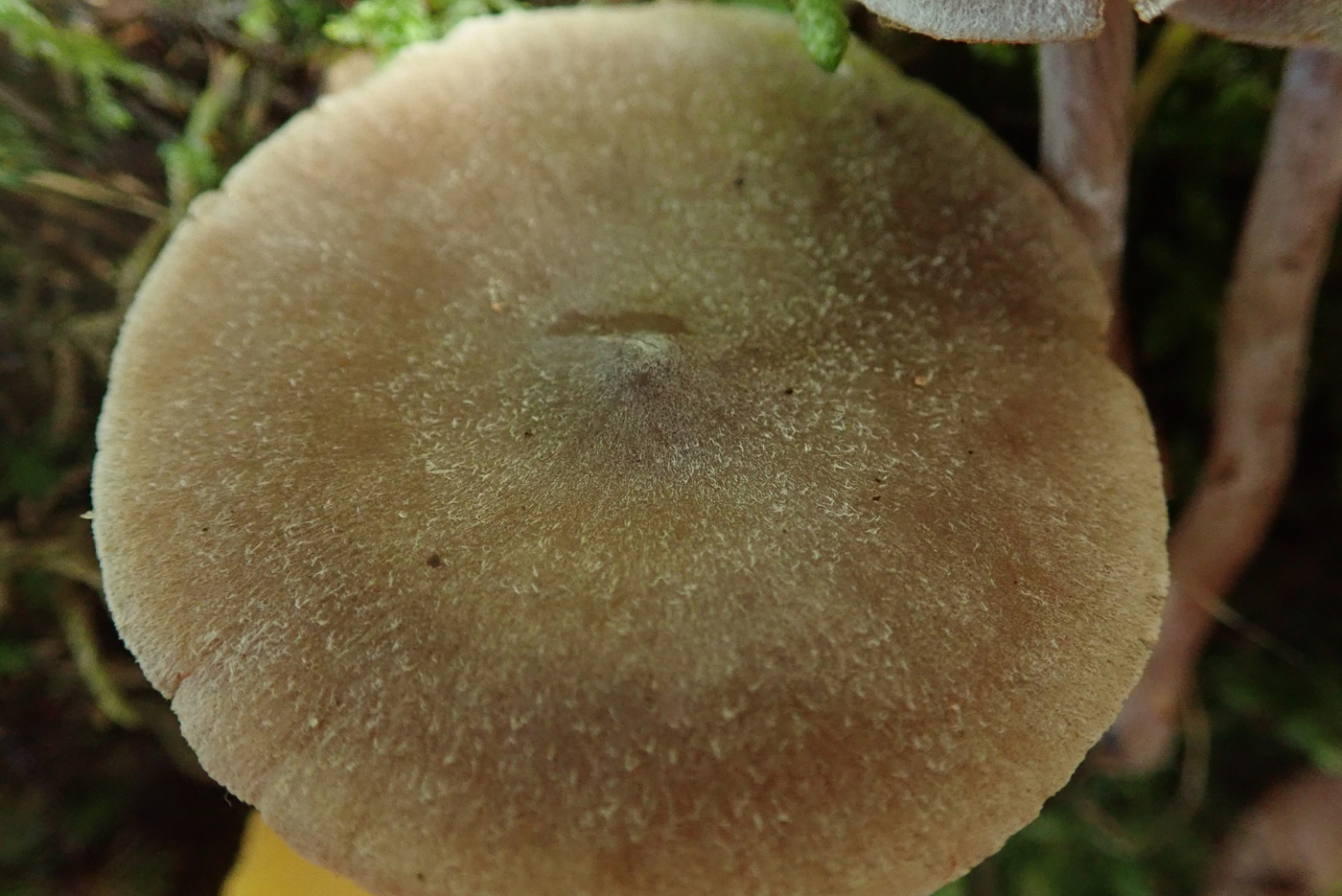 |
October 22nd Cortinarius hemitrichus (Frosty Webcap)
Penny C. found this collection fruiting in grass in Hodgemoor Woods under Birch with which it is host specific. Rather a nondescript Webcap of medium size and a greyish cap and rusty gills typical of the genus. However, looking with care at the cap surface one can see fine short white hairs which give it a frosty appearance, hence it common name. Quite a common species given it's tree host.
|
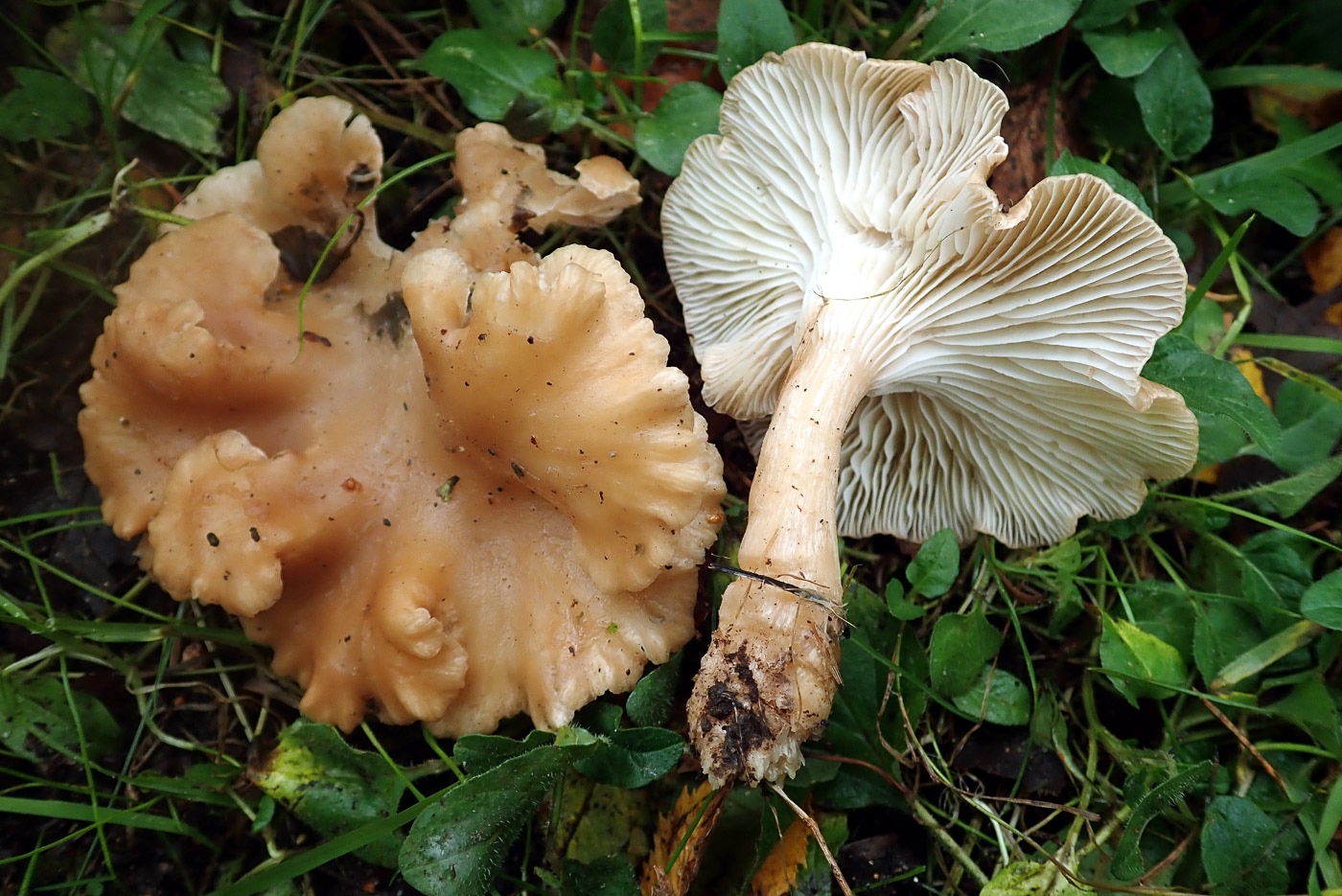 |
October 22nd Infundibulicybe costata (a Funnel with no common name)
Penny C. noticed this pair in a grassy path edge in Hodgemoor Woods. Previously in the genus Clitocybe, those species with exceptionally decurrent gills are now moved to this new genus - yet another name change to get used to. This occasional species is similar to the very common I. gibba (see photo dated Sept 02) but is generally rather flabby and with this distinctive irregular undulating to furrowed margin. We have just a handful of county records though it may possibly have been overlooked as I. gibba.
|
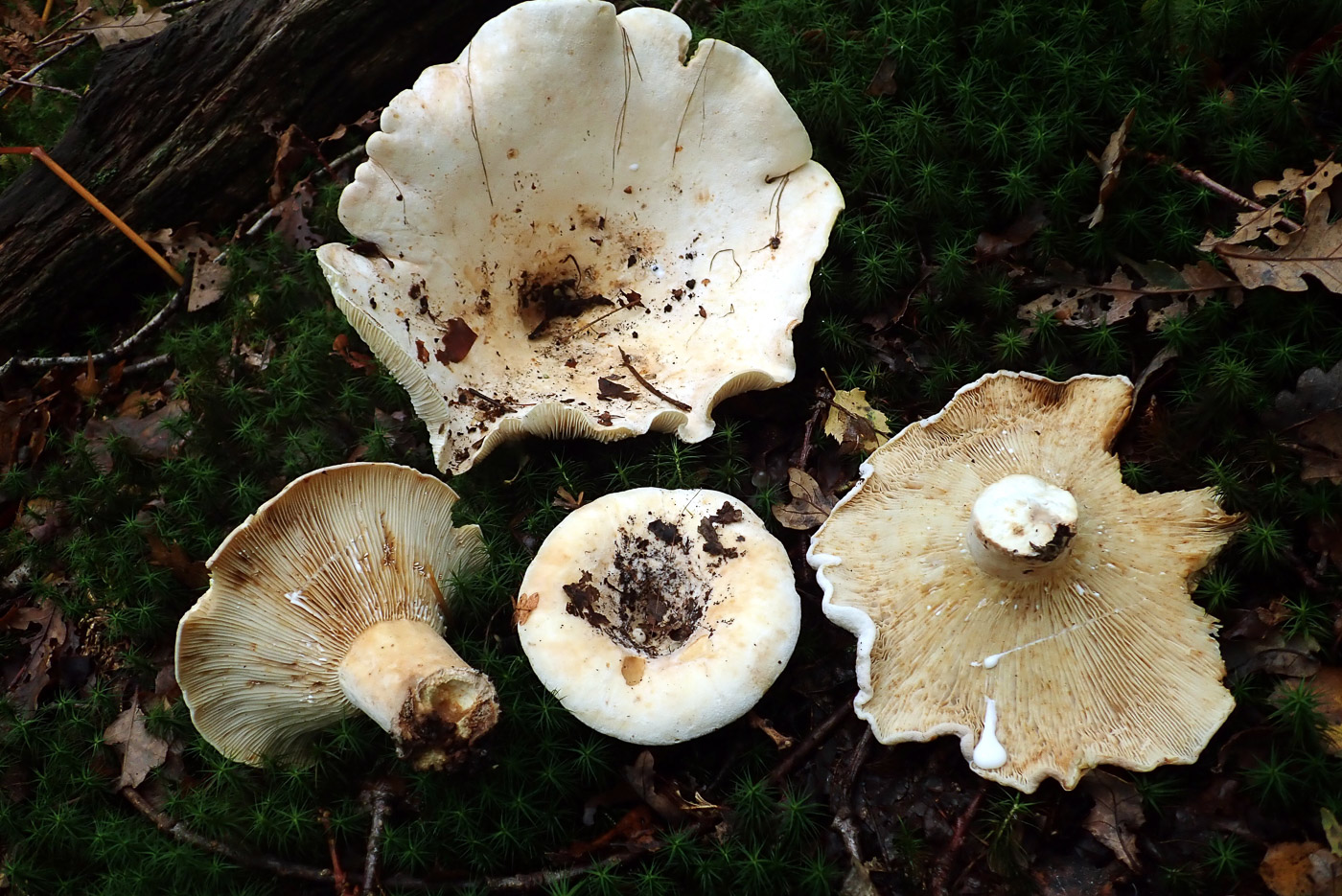
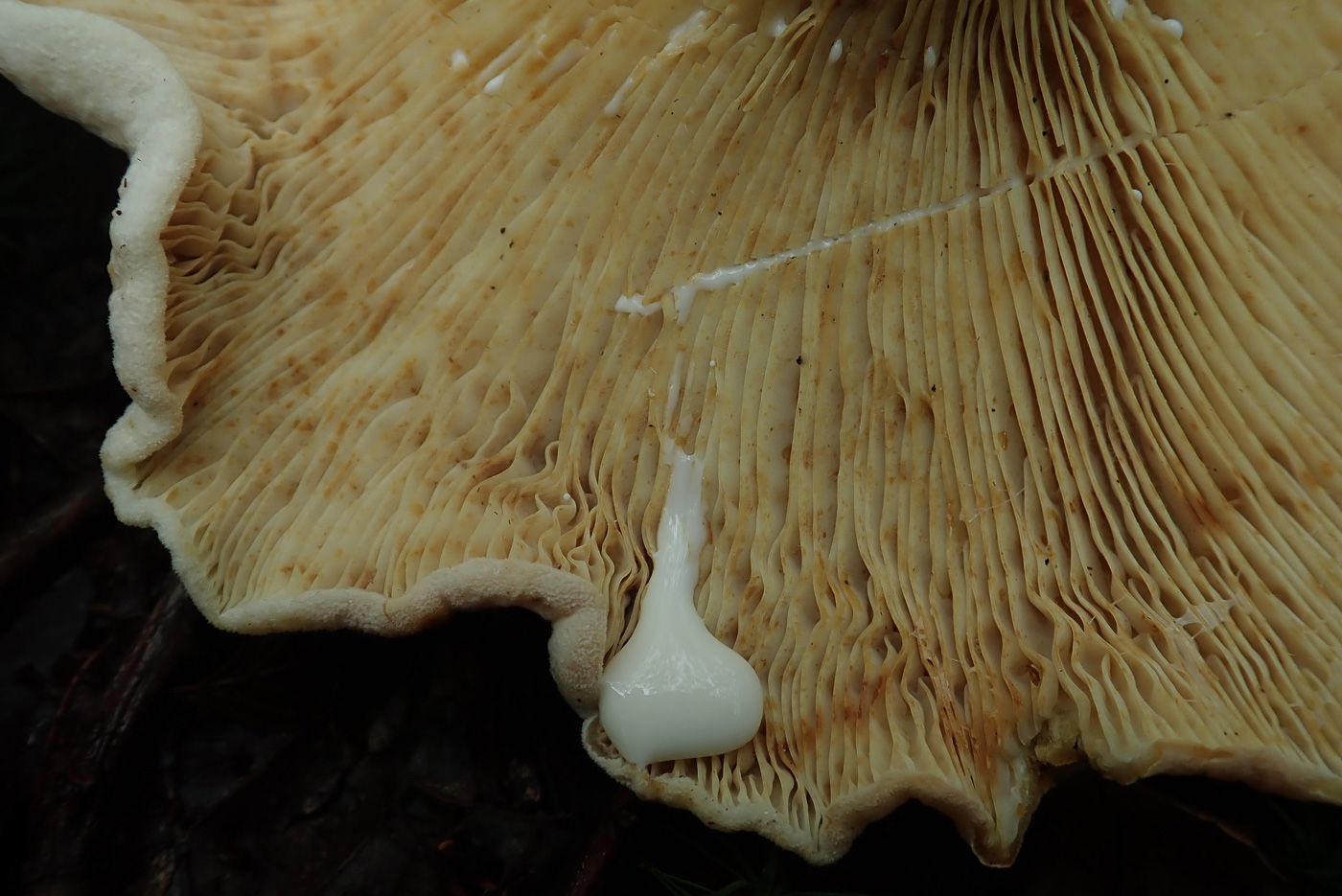 |
October 22nd Lactifluus vellereus (Fleecy Milkcap)
Paul C. found these enormous fruitbodies under Birch, Oak and Beech in Hodgemoor Woods. The smallest (central) cap - brought home to work on - was 10 cms across so the largest (top) cap must have been around 20 cms! This species is one of four, split now from the genus Lactarius, which are very similar and difficult to separate in the field with certainty. (See also Lf. piperatus dated Oct 12.) Today's species had copious milk (seen forming a puddle on the cap in photo 2) which was mild to taste, in contrast to the milk of Lf. piperatus which is extremely hot!
|
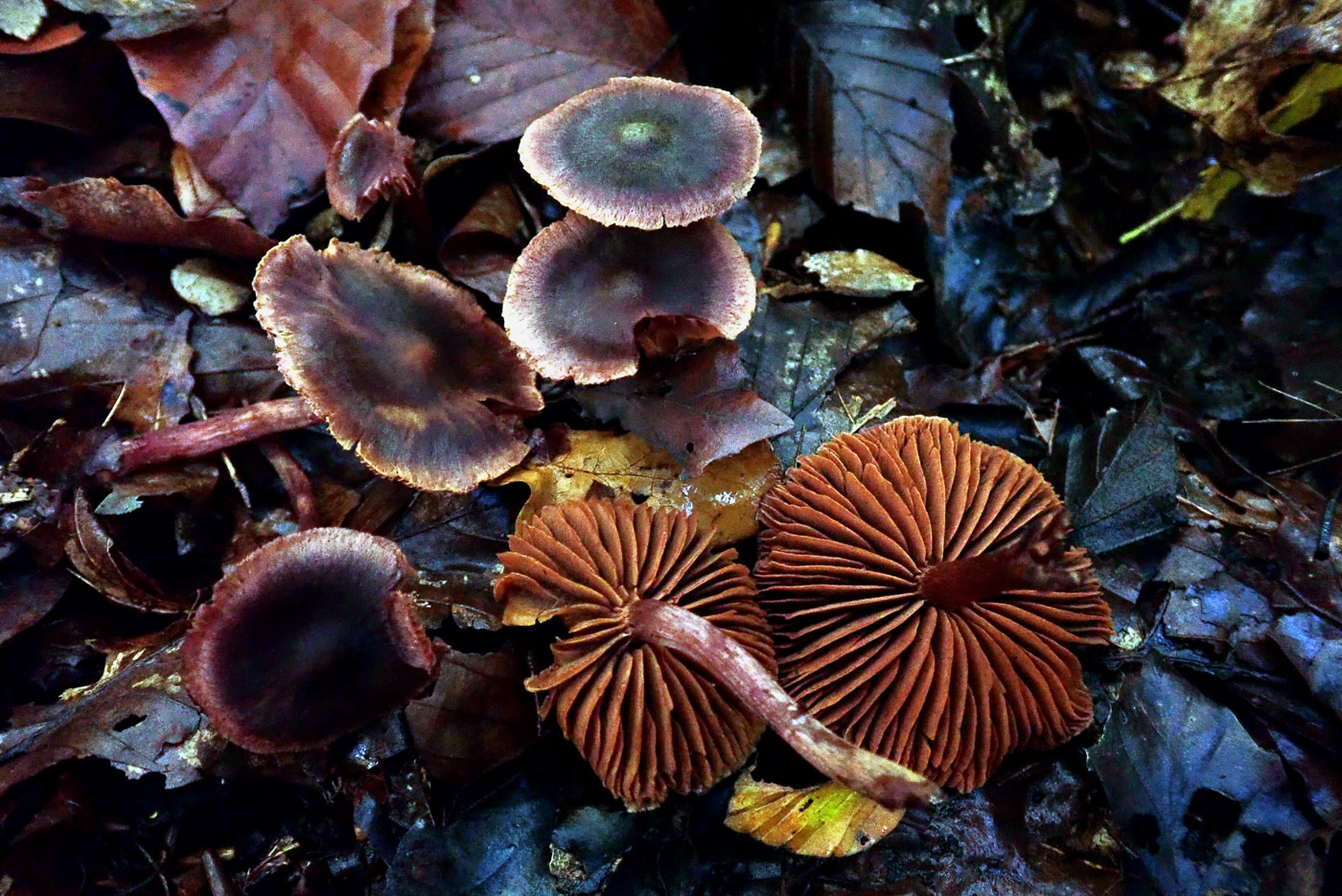 |
October 22nd Cortinarius anthracinus (a Webcap with no common name)
Penny C. spotted this small species under Birch and Oak in Hodgemoor Woods. This is an uncommon small Webcap with a notably dark cap, almost black in the centre but paler purplish red at the margin. It was well camouflaged amongst the woodland litter with Beech, Oak and Birch all nearby. We have just a few previous records of the species from this site, also one from Rushbeds Wood.
|
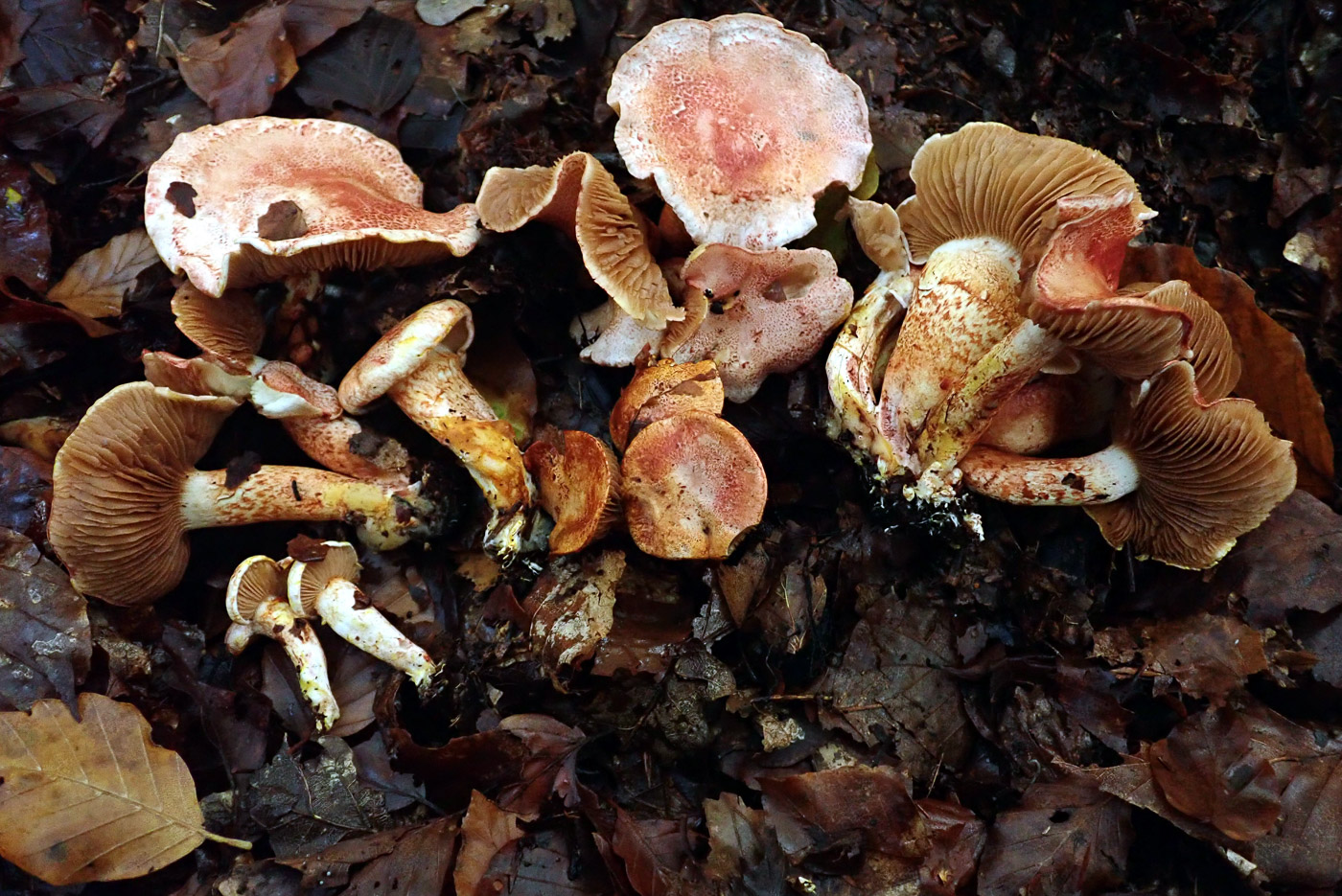
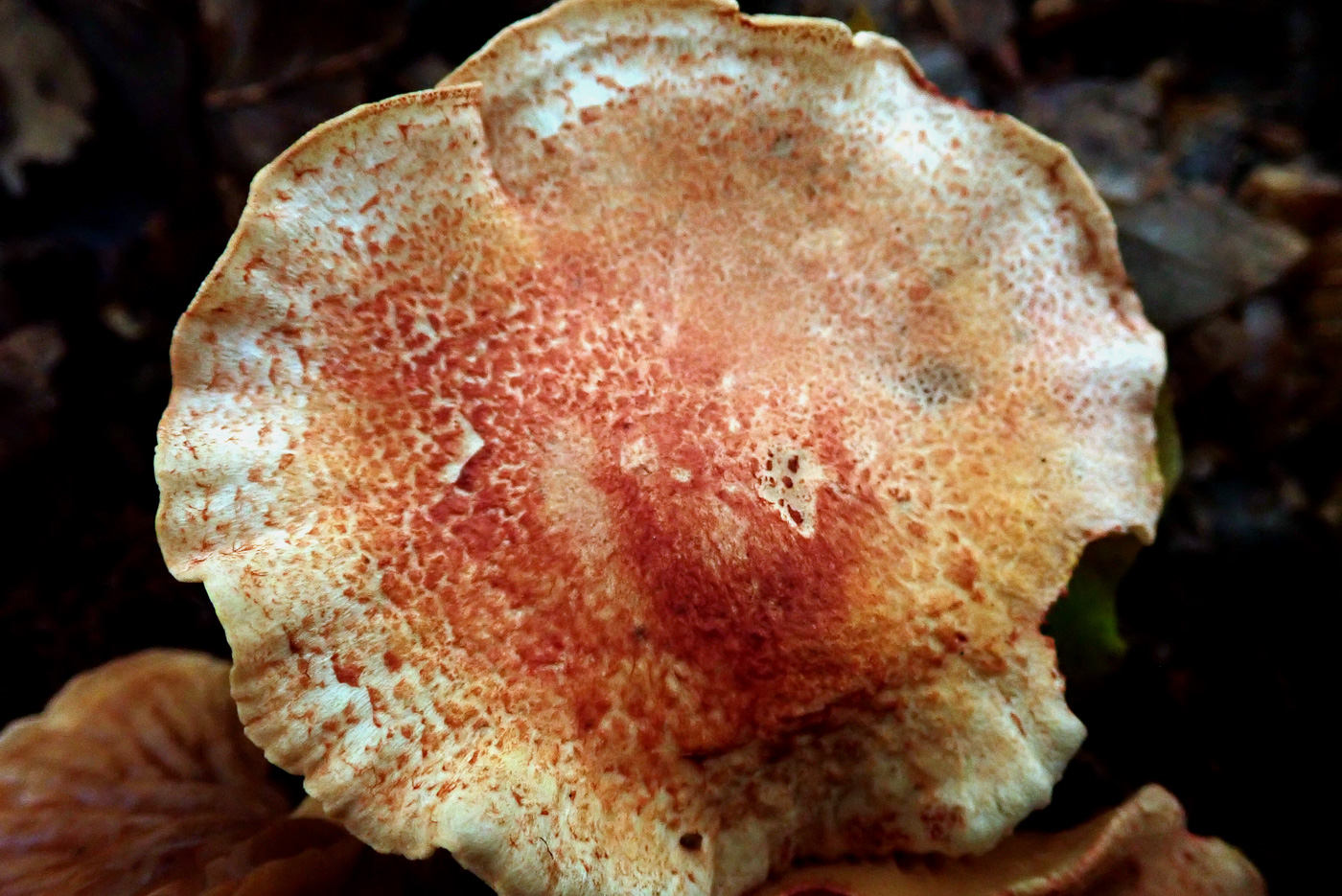
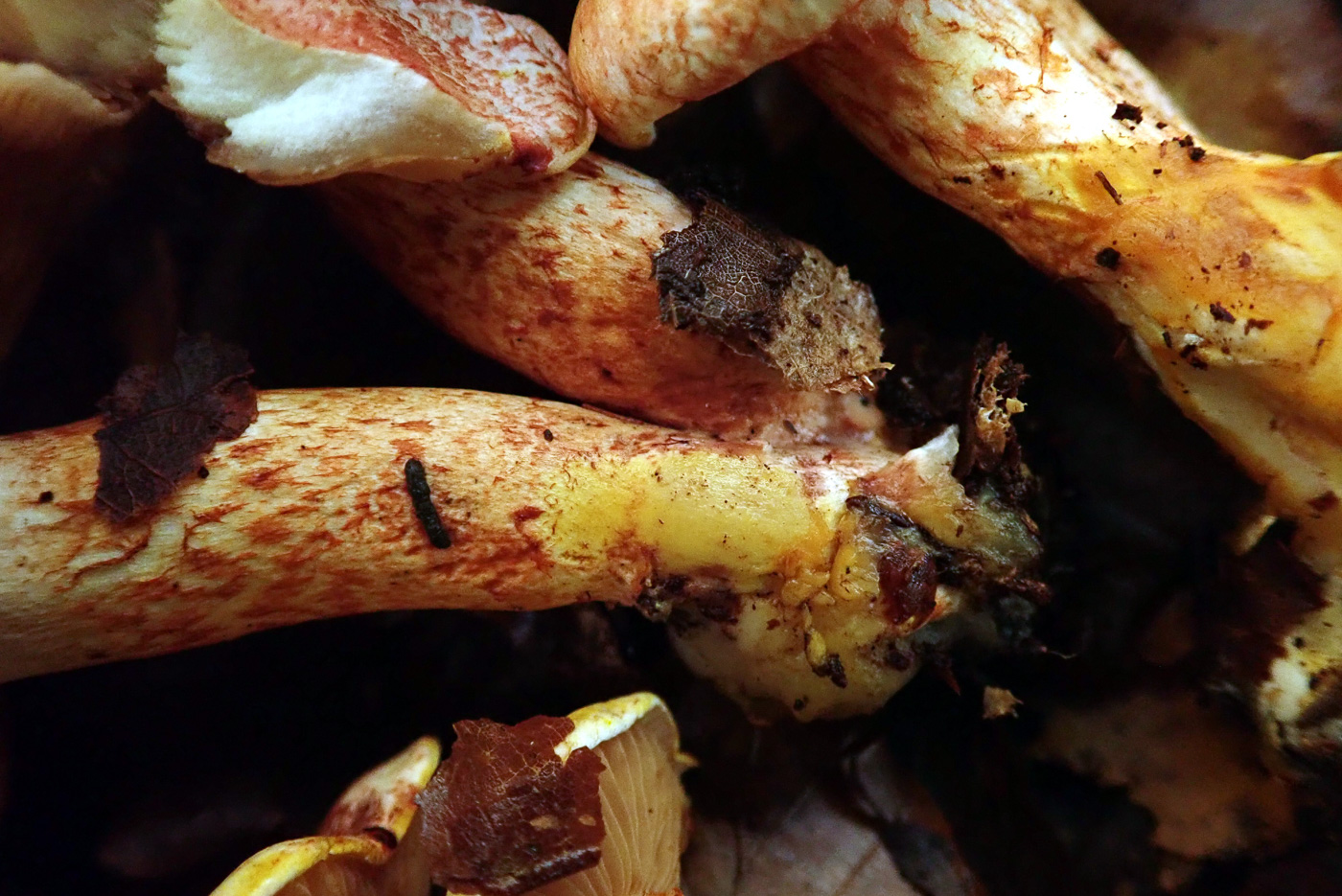 |
October 22nd Cortinarius bolaris (Dappled Webcap)
Knowing that this species was starting to fruit, Penny and Paul C. went to Hodgemoor Woods to a previous area known to them and were rewarded with good numbers of this striking Webcap - one recognisable in the field from the cap colours and yellow staining of the stem when handled. The blotchy effect on the cap is characteristic (hence the common name), as are the reddish scales on the stem, seen in photo 3 where the yellow staining is also apparent. Quite a common Webcap under deciduous trees in the Chilterns.
|
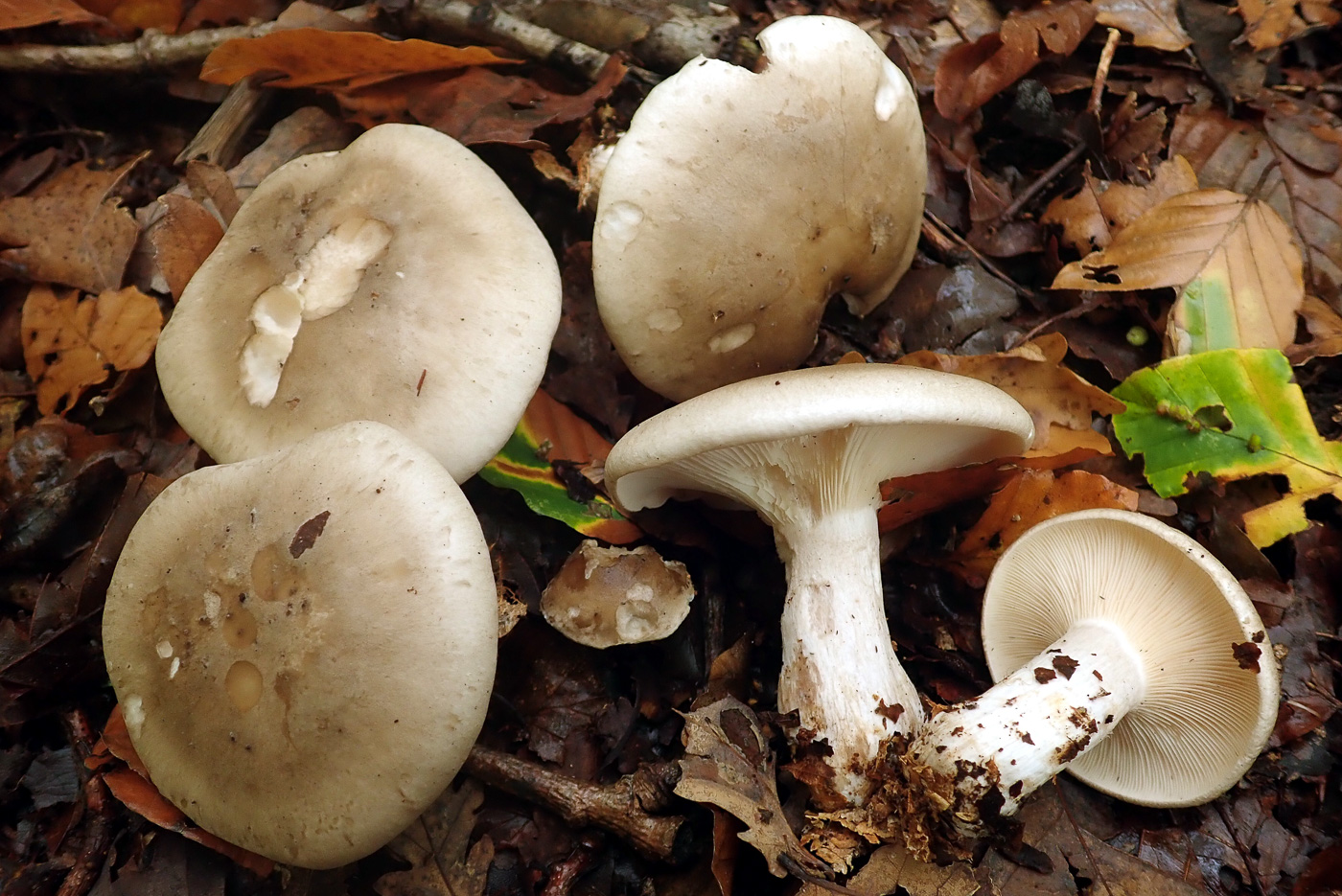
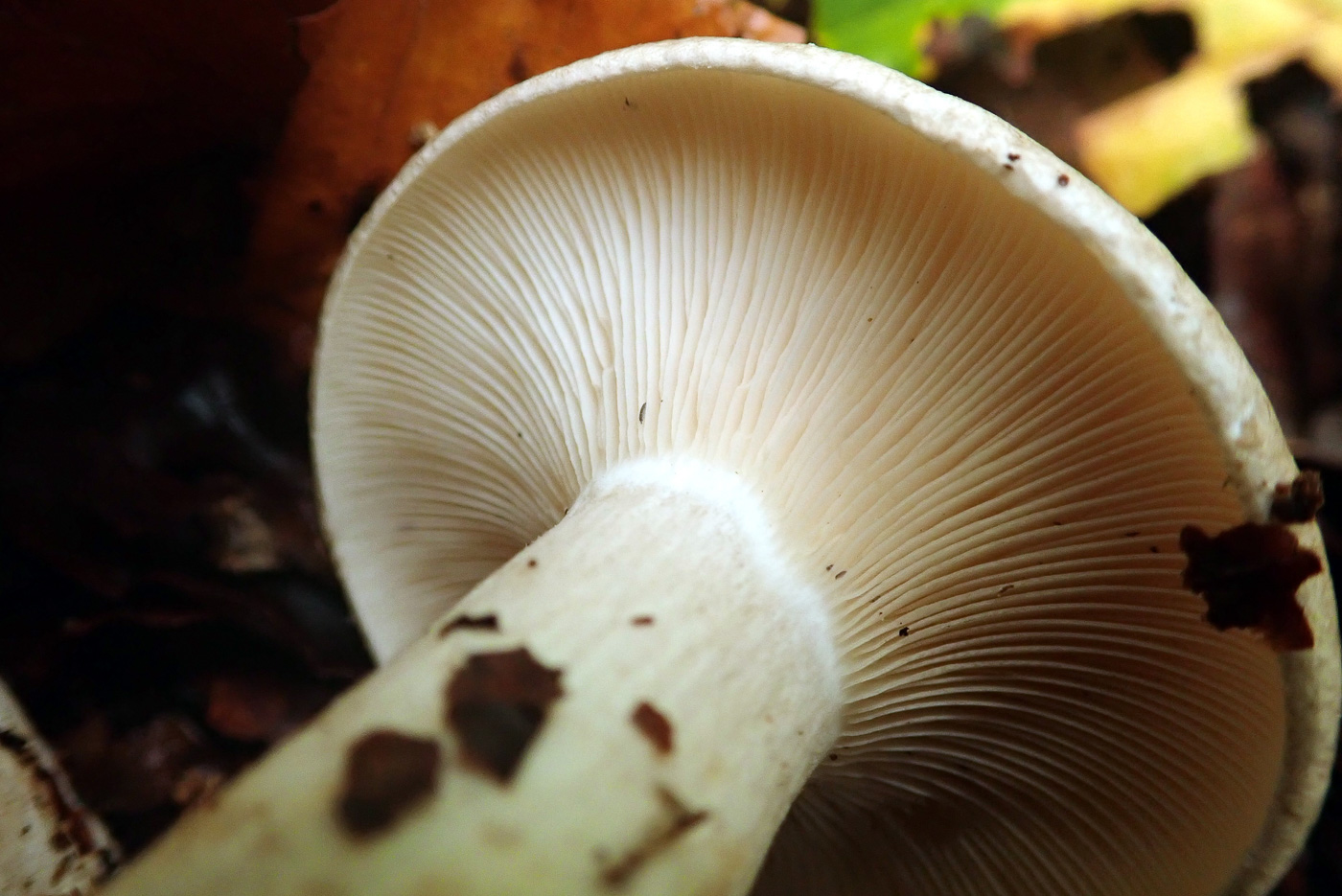 |
October 22nd Clitocybe nebularis (Clouded Funnel)
Penny and Paul C. found this collection under mixed deciduous trees in Hodgemoor Woods. Considered a late season fruiter it is just appearing now and is one of the larger Funnels, getting to as much as 20 cms across at maturity. The caps here were only 6 cms across but the thickness of the stems even at this stage suggests there's a lot of expanding to come! Gills are crowded and decurrent and caps are rounded at this stage and greyish but always paler towards the margin. It has a pleasant fruity smell (to Penny of apricots) but is a toxic species. In maturity it is often confused with the equally large C. geotropa. Common and often forming rings, found in woodland and grassland.
|
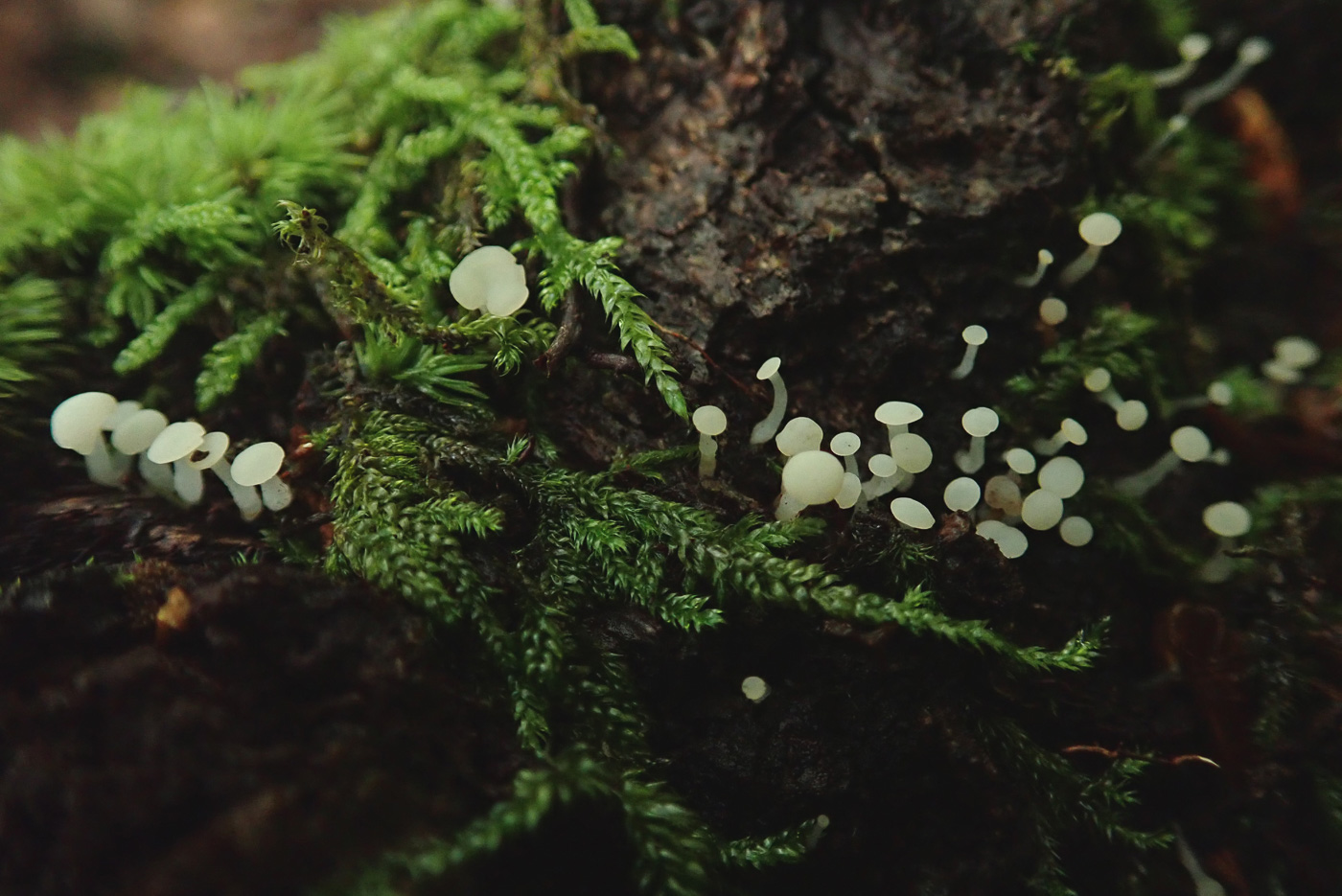 |
October 22nd Cudoniella acicularis (Oak Pin)
Penny C. noticed these tiny Ascomycetes on a rotting stump in Hodgemoor Woods whilst on her knees photographing something else! No more than 3 mms high, they look like a colony of tiny white capped Bonnets until you look closely and see that there are no gills under the widened top. Not uncommon on rotting stumps of many kinds, particularly Oak.
|
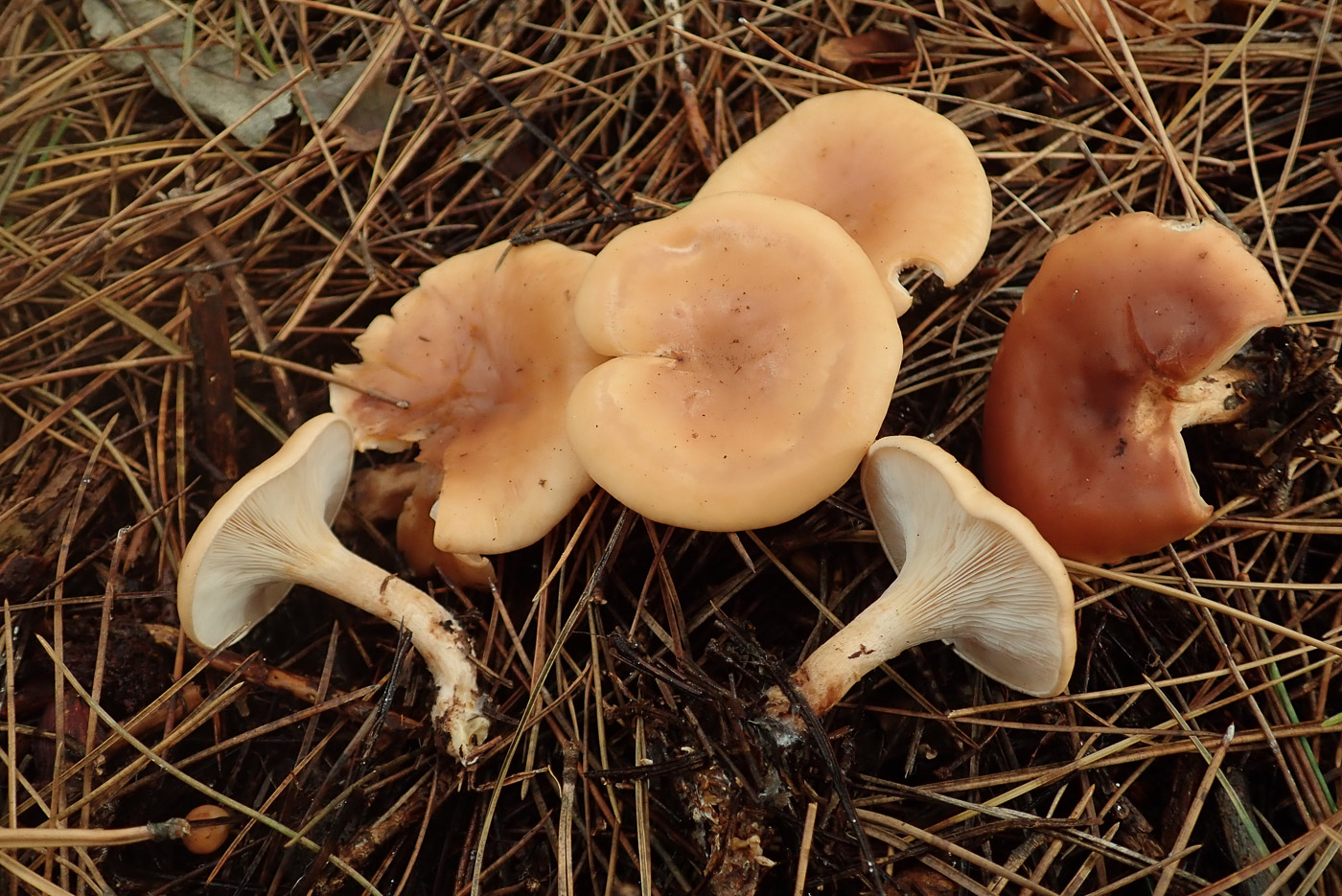 |
October 22nd Lepista (Paralepista) flaccida (Tawny Funnel)
Penny C. found a ring of these mushrooms under Pine in Hodgemoor Woods. The shape of the cap and strongly decurrent gills suggest this is related to the genus Clitocybe, but the ornamented spores tell otherwise. The strong rusty to tawny smooth cap is distinctive and this together with the very crowded sloping gills make this species fairly easy to recognise - a very common woodland species often in large numbers under both deciduous and coniferous trees, though perhaps more often under conifers.
|
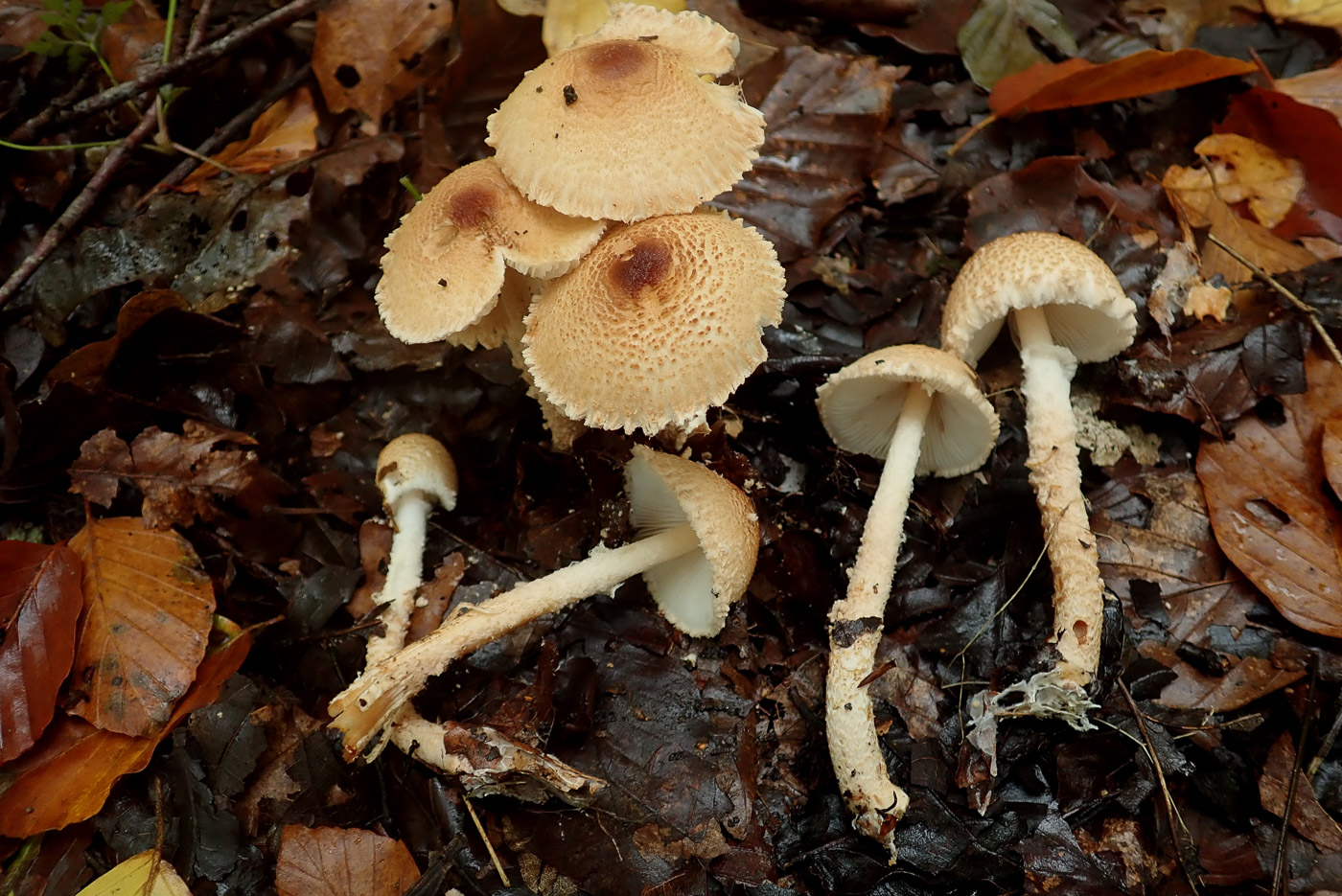
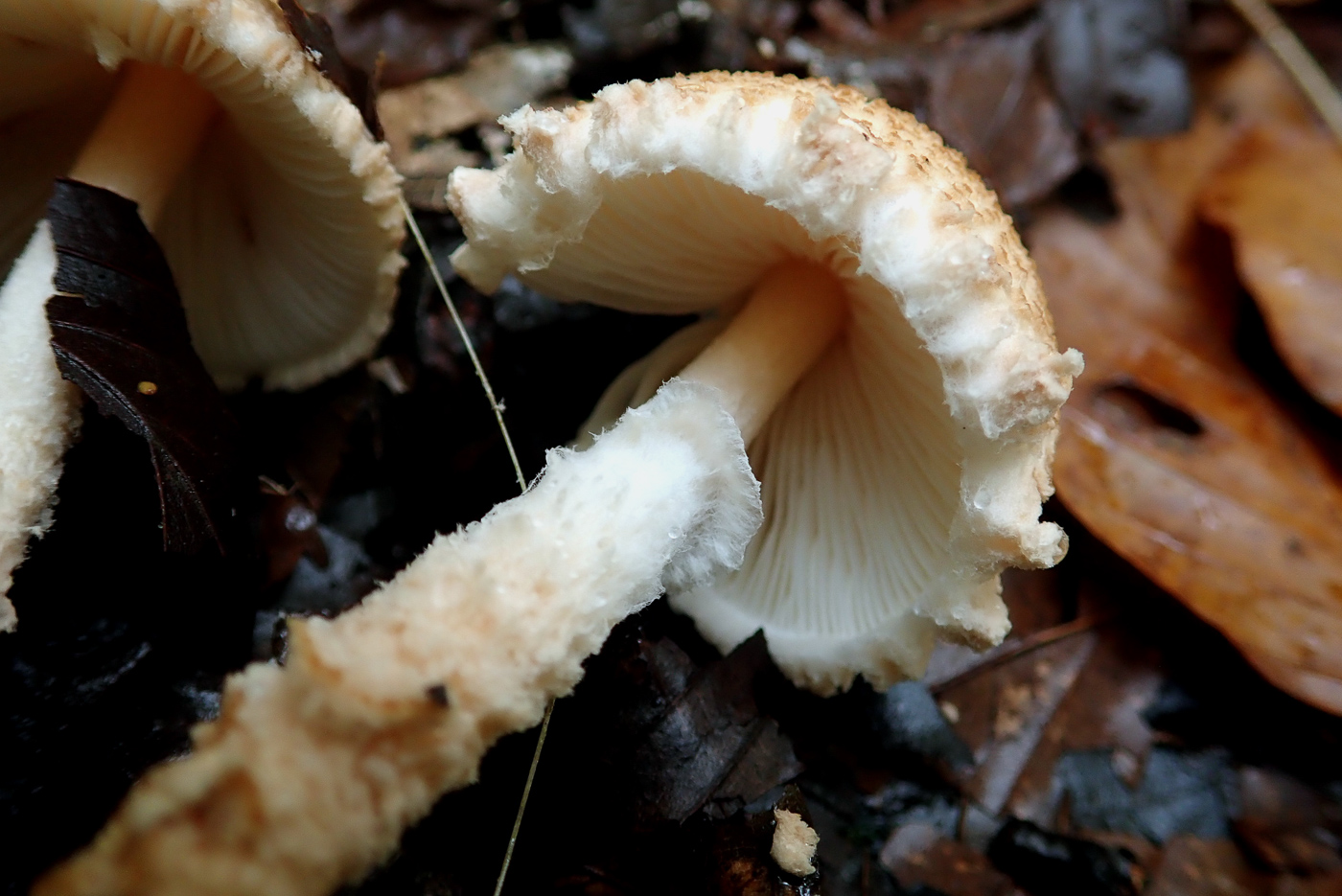 |
October 22nd Lepiota magnispora (Yellowfoot Dapperling)
Paul Cullington found this patch of beautiful specimens amongst nettles with mixed trees in Hodgemoor Woods (photo Penny C.) This fairly common species is a medium sized Dapperling with caps up to 5 cm across and has the free white gills and cap with a chestnut centre and gradually paler towards the margin typical of the genus, but is notably finely floccose scaly especially at the margin. The stem has a floccose white ring below which are fluffy orangy belts. It has an unpleasant smell similar to L. cristata (see photo dated Oct 16) but is both larger and much more floccose.
|
October 21st 2020
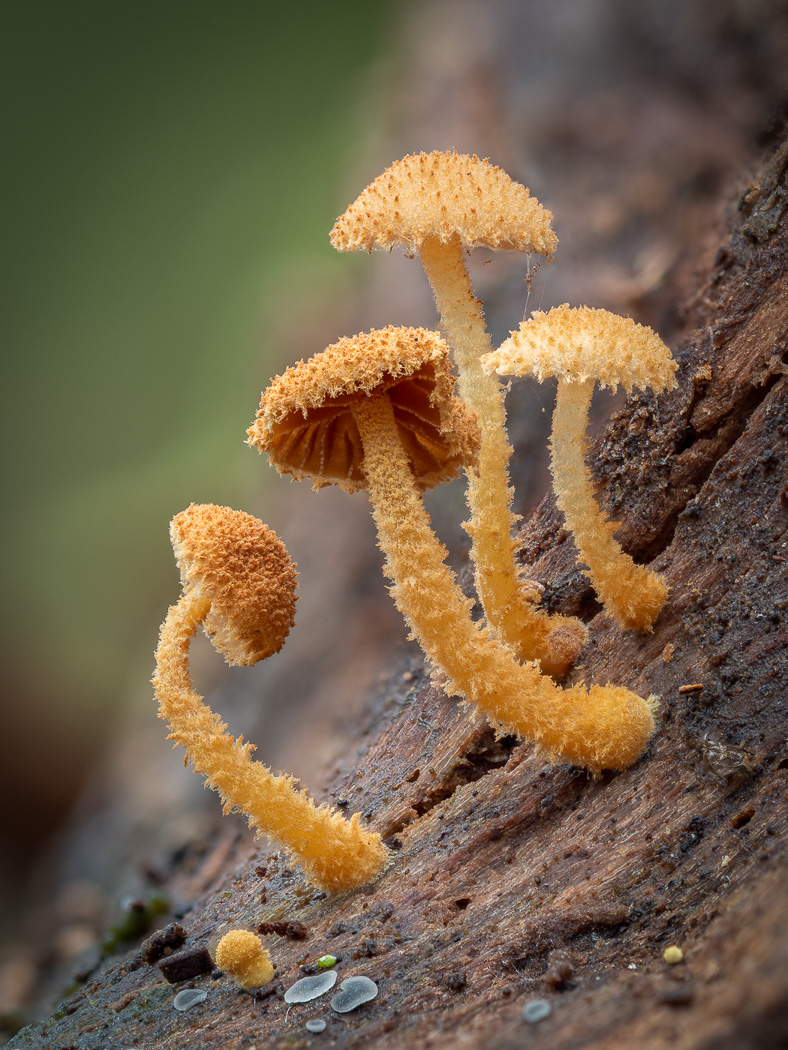 |
October 21st Phaeomarasmius erinaceus (Hedgehog Scalycap)
Barry Webb focuses (literally!) on Slime Moulds but in doing so comes across interesting fungi growing on the same rotting wood frequented by those organisms. This rare and stunning little species is one of these, found on a dead branch of Apple collected from Hedgerley Green and kept in Barry's greenhouse to see what it might produce! Though tiny, only up to about 2 cm tall at most and in this case half that size, it is unmistakable being the only species this size liberally covered in erect rusty scales. It is usually on dead Willow or Birch, occasionally on other deciduous wood and we have very few county records.
|
October 20th 2020
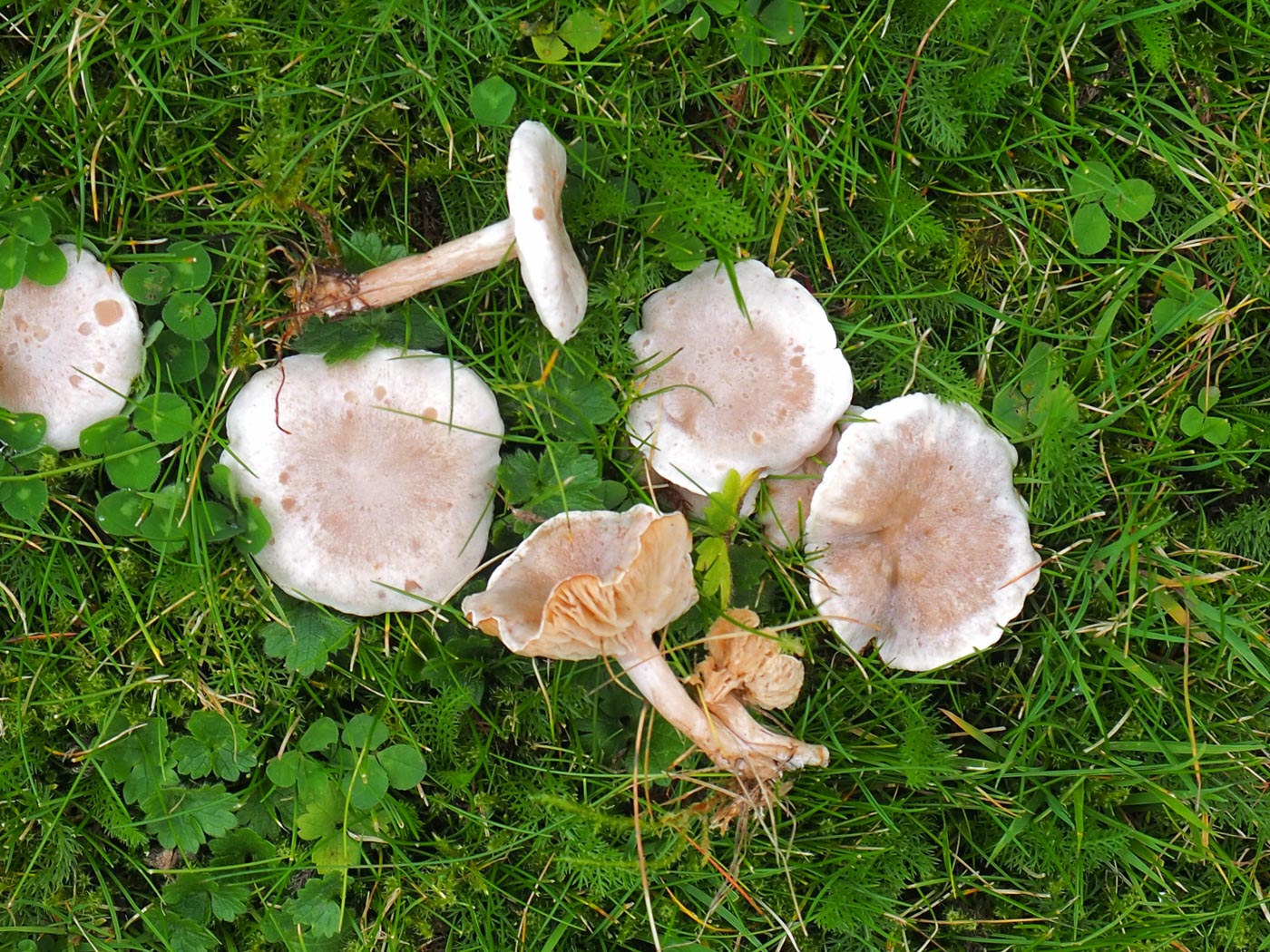
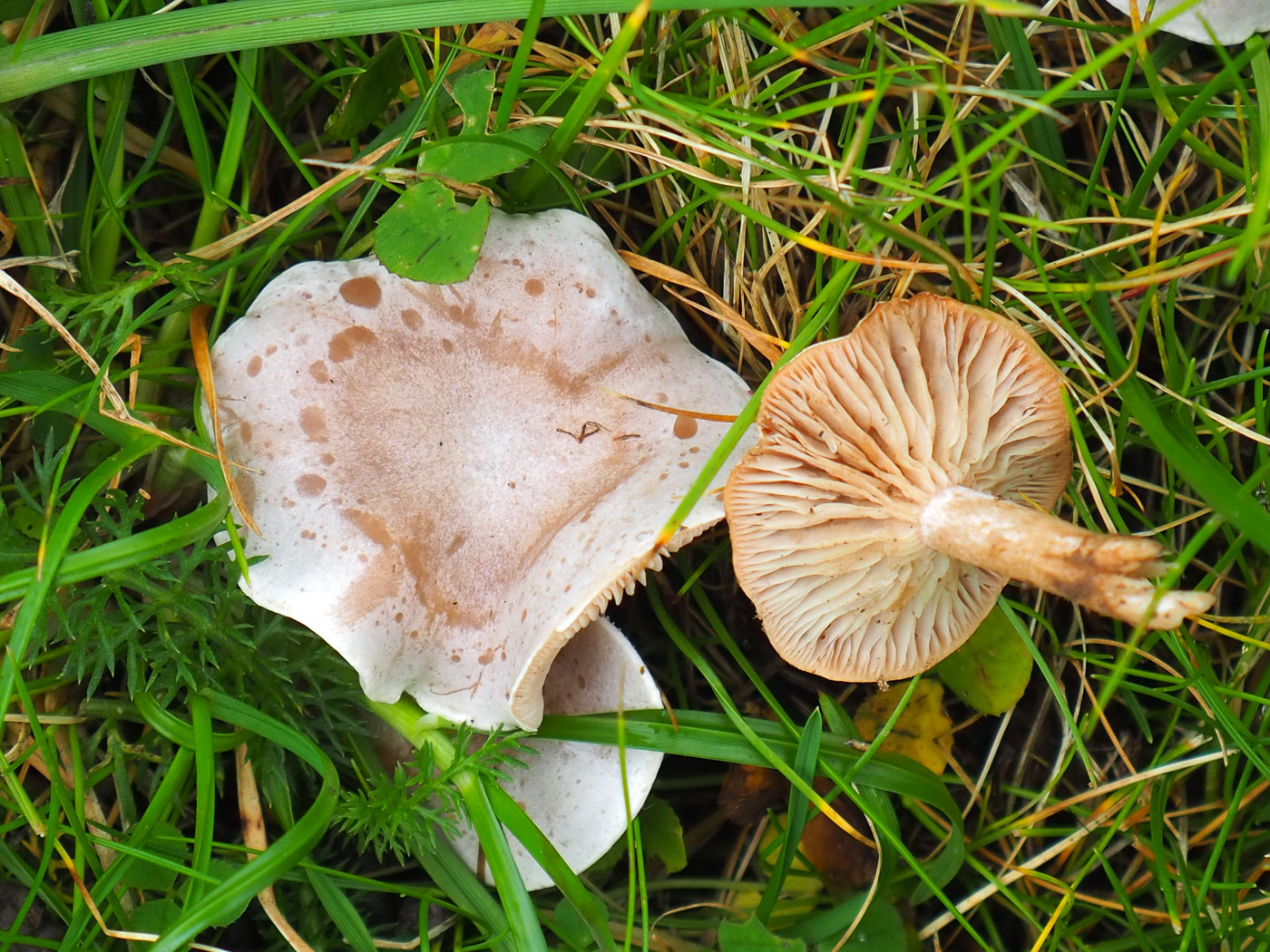 |
October 20th Clitocybe rivulosa (Fool's Funnel)
John Catterson found good numbers of this species in a churchyard in Hughendon. A common grassland species, this was previously known as C. dealbata and synonymy with C. rivulosa wrankles with some mycologists including Penny C. because the distinct pink tones and typical droplet spots on the cap (seen clearly in John's photos) together with grassland habitat seem very distinct from the white to buff predominantly woodland species which is C. rivulosa. It often forms fairy rings in lawns and is dangerously toxic, so do not mistake for Marasmius oreades (Fairy Ring Champignon)!
|
October 19th 2020
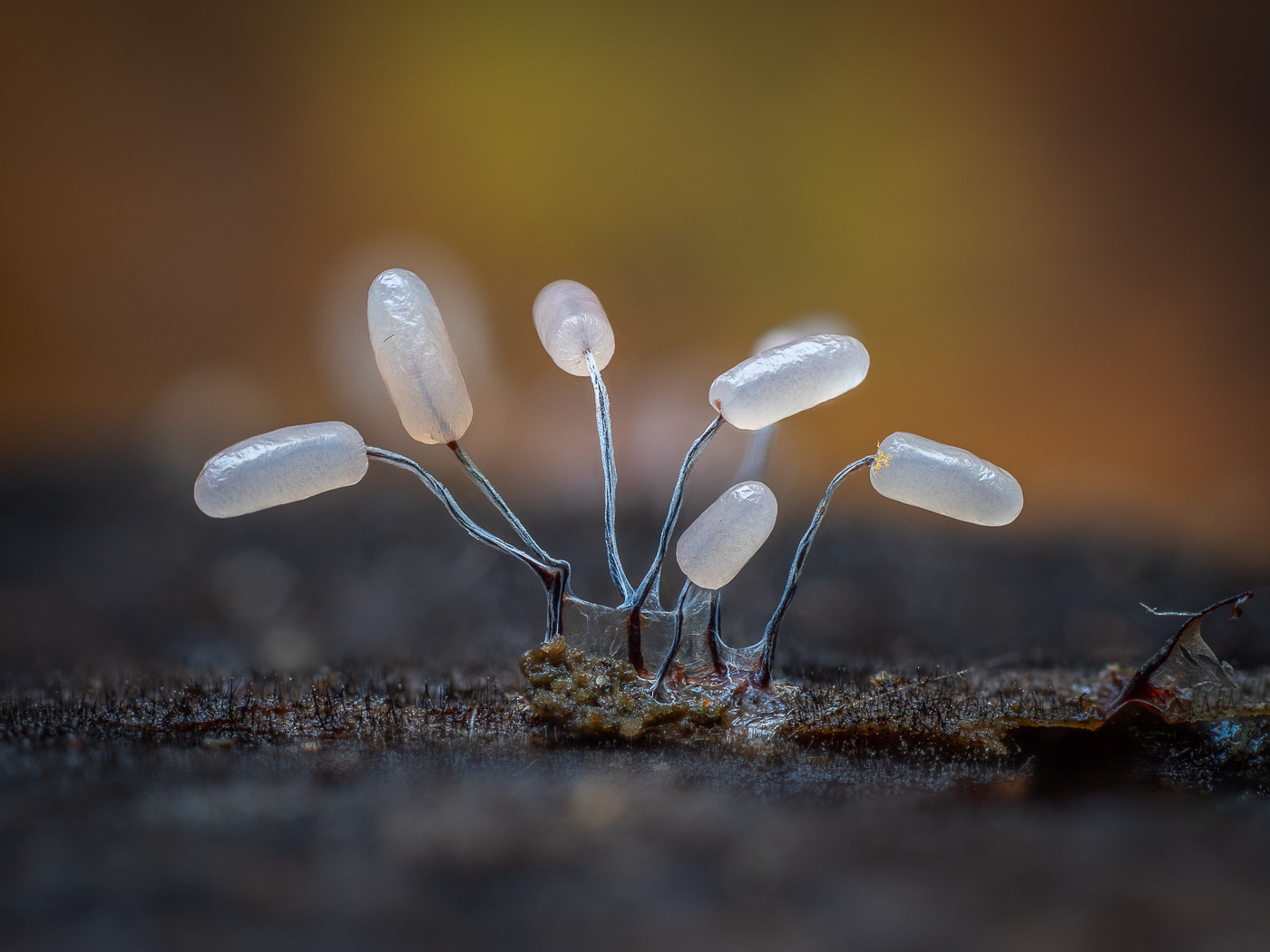 |
October 19th Stemonitopsis typhina (a Slime Mould with no common name)
Barry Webb took this beautiful photo of a very common slime mould found on a damp Beech branch in Burnham Beeches. Each sporocarp (fruiting body) is no more than 5 mm high and its shape resembles the similar genus Stemonitis but the species is characterised by these persistently silvery shining cylindrical heads and beneath them a stalk which reminds of silk stockings, the central black core looking like the seam!
|
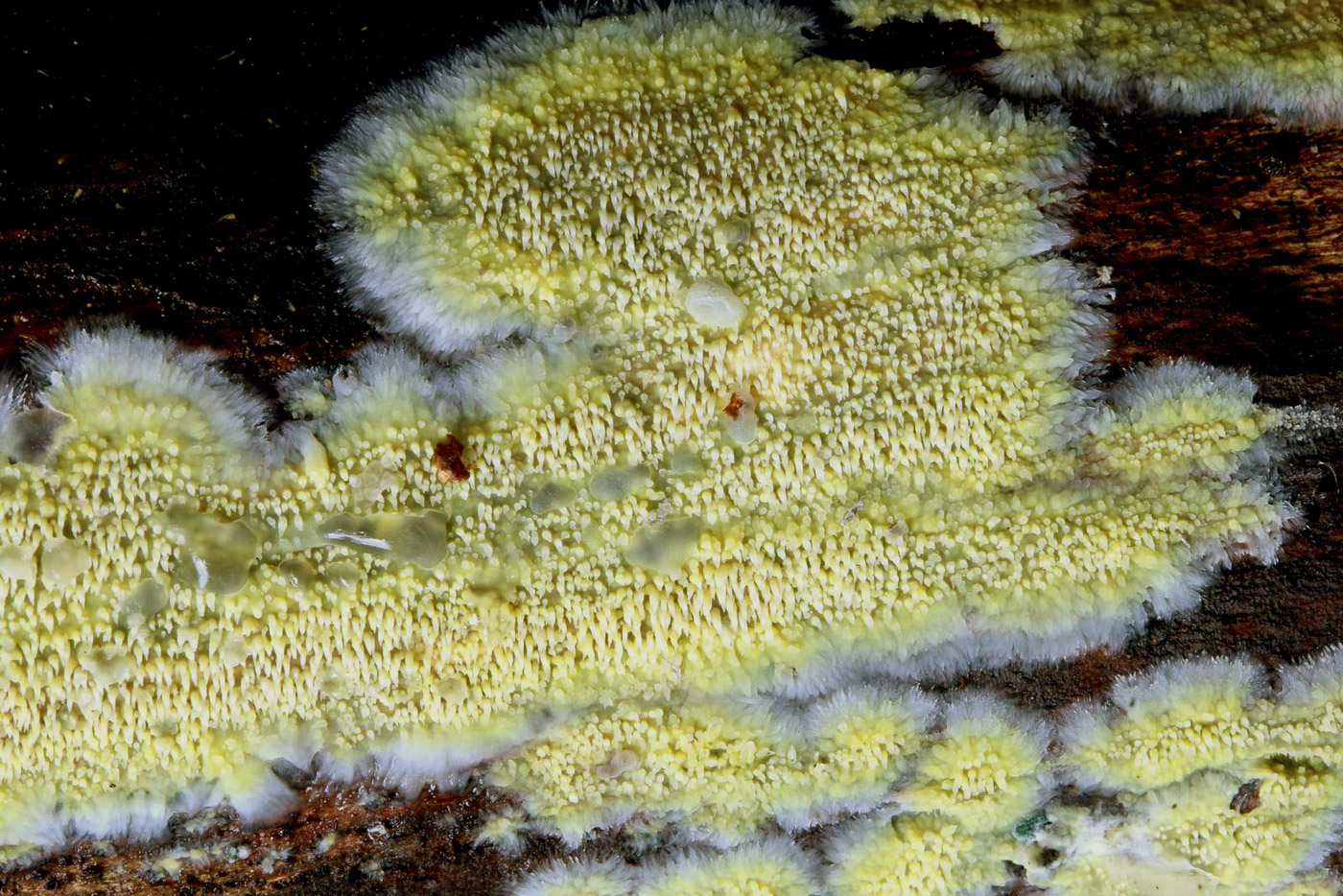
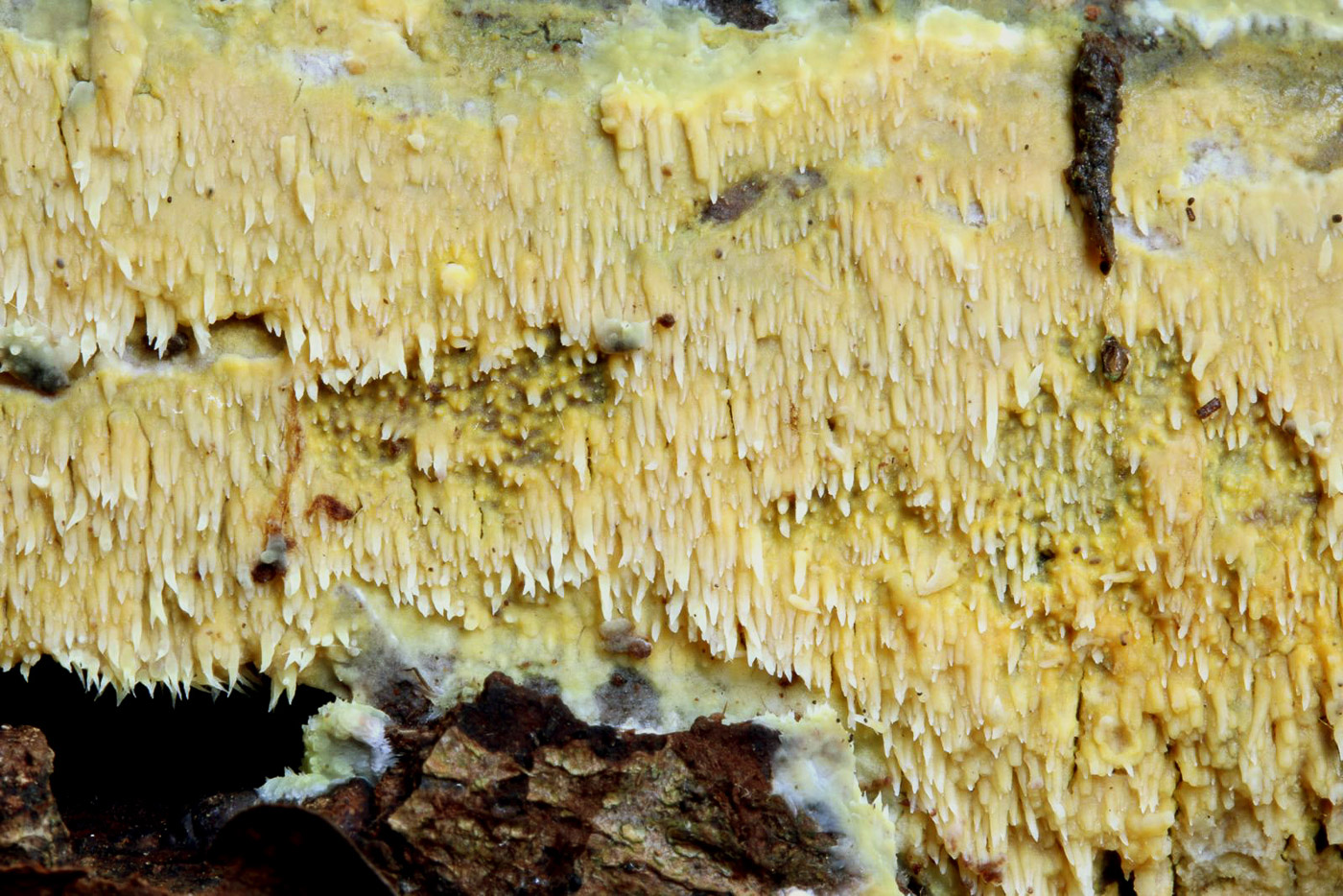 |
October 19th Mycoacia uda (a toothed resupinate fungus with no common name)
Claudi Soler found this interesting corticioid fungus (one that grows flat on fallen wood) on a fallen Beech branch in Burnham Beeches. Most corticioid fungi are basically very similar and also very tricky to identify - only a very few can be named in the field. This species, however, has two redeeming features which make this possible: it is bright yellow with a fringed white border and it has teeth like a Hydnum . Fairly common, it can be found on deciduous wood on many kinds.
|
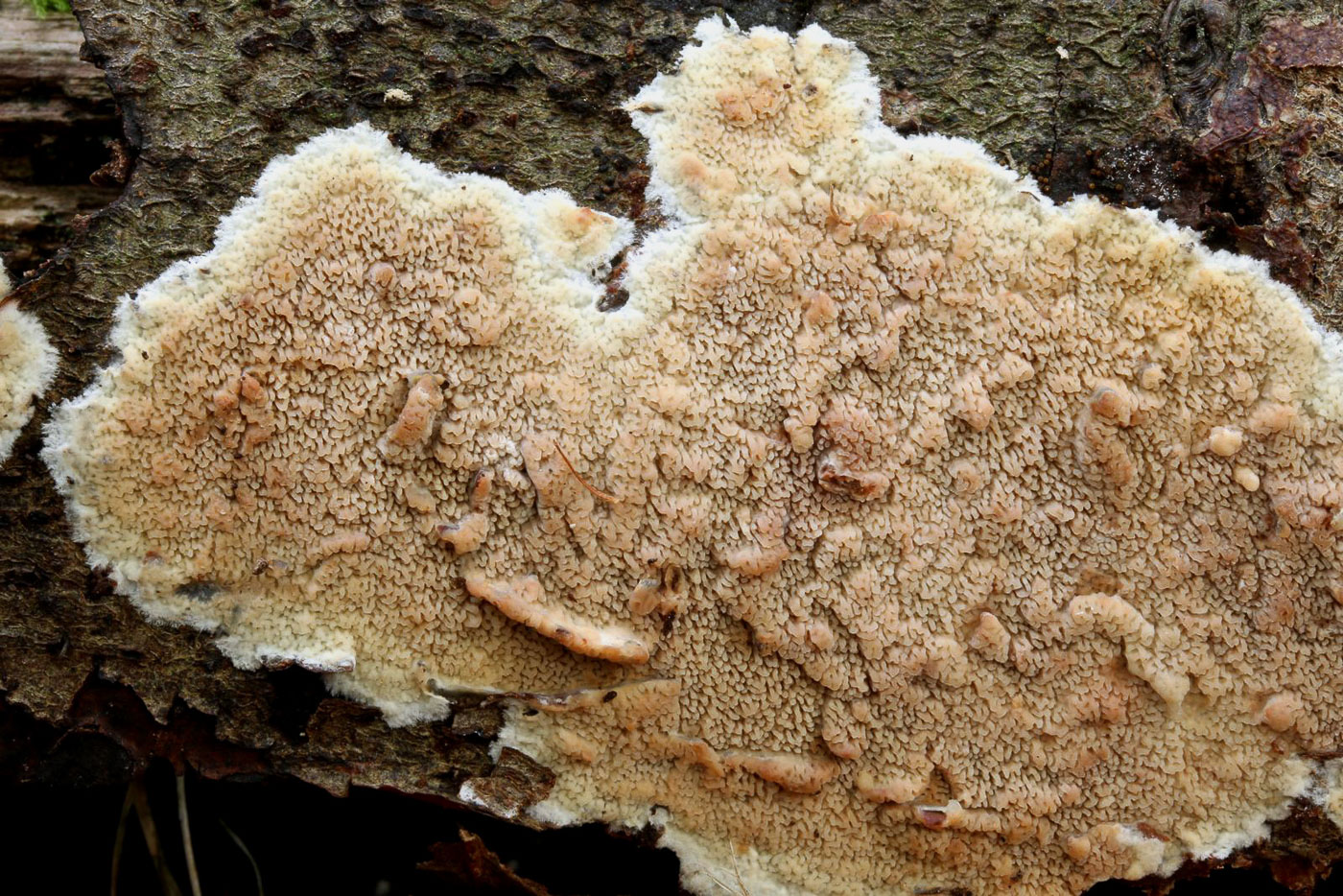 |
October 19th Phlebia rufa (a Jelly Rot with no common name)
Claudi Soler noticed this resupinate corticioid fungus (one that grows flat on fallen wood) on a fallen Beech branch in Burnham Beeches. The genus Phlebia has a soft rubbery to jelly-like consistency and several species are quite common on deciduous wood. See also P. tremellosa dated Oct 01 and P. radiata dated Oct 12.
|
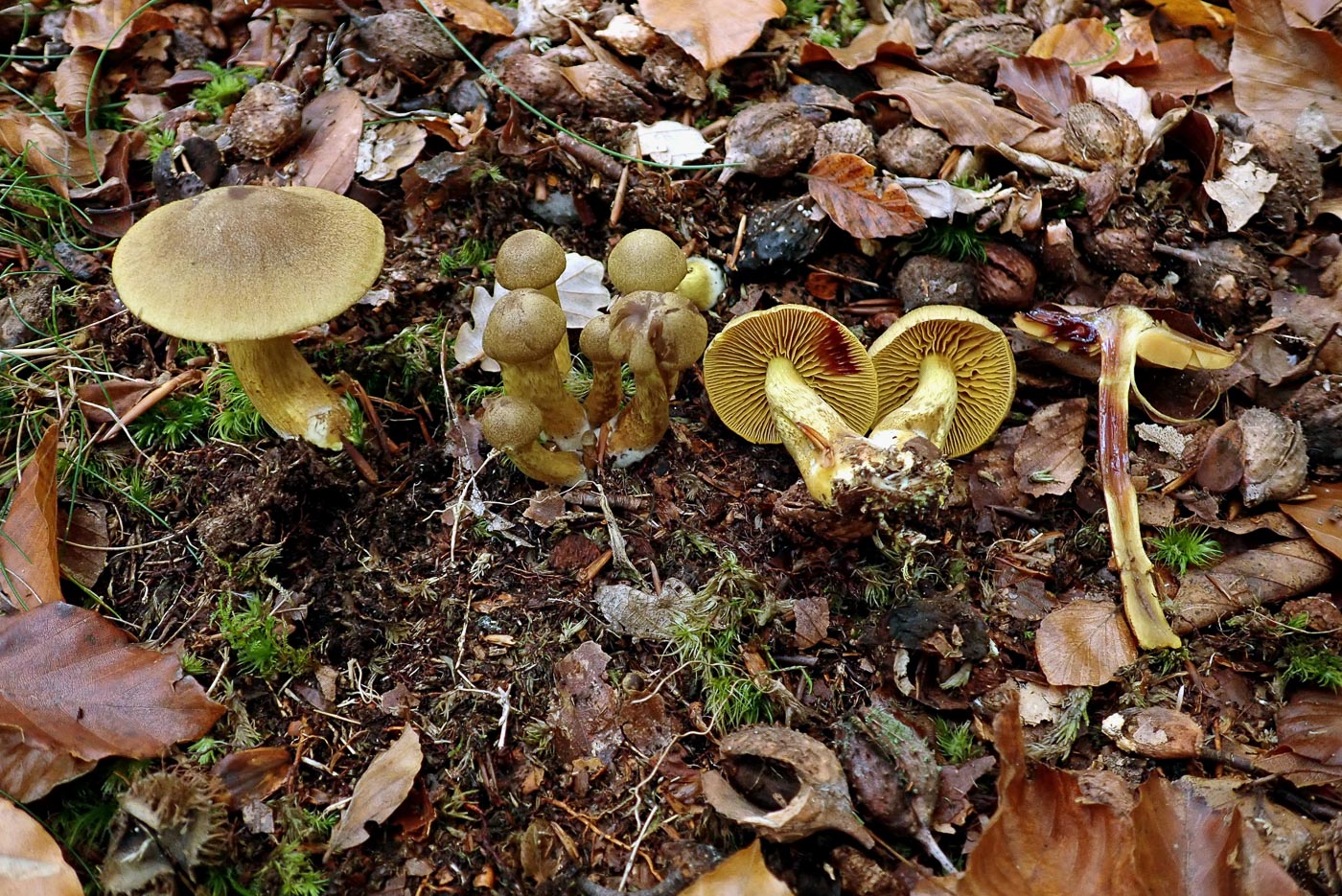 |
October 19th Cortinarius huronensis var. olivaceus (a Webcap with no common name)
Penny C. found this very rare species in the same mossy glade in Burnham Beeches where it was first discovered for Britain two years ago by Mario Tortelli (also present today with Geoffrey Kibby - both Cortinarius experts). It is almost indistinguishable from C. croceus, another member of the Dermocybe group of Webcaps having dry silky caps (see photo dated Oct 16), but in today's species if a drop of the chemical KOH is added to the gills they turn blood red (seen on the central upturned fruit body and also on the far right hand one). If added to C. croceus it turns dirty brown. So this was the second British record. It would appear that both species occur in the same Beechwood habitat.
|
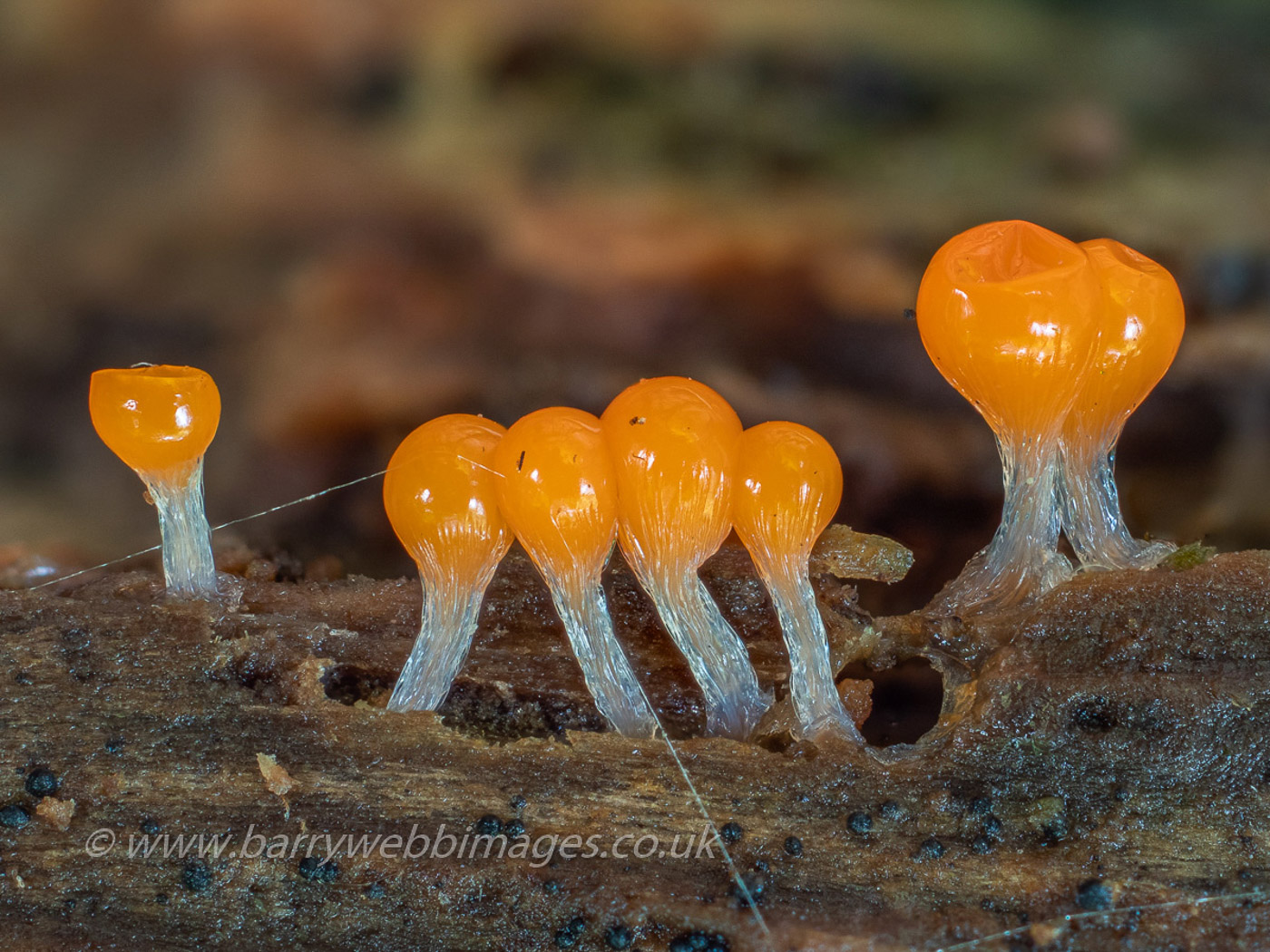 |
October 19th Trichia decipiens (a Slime Mould with no common name)
Barry Webb found these tiny orange blobs on stalks on rotting fallen Beech in Burnham Beeches. Most Slime Moulds have white plasmodium at this immature stage when identification even to genus is not possible, but a few species have brightly coloured plasmodium and can be named. There are many species of the genus Trichia but only this particular species has white stalks with orange to pink blobs on top. We'll try and add photos of its mature stage if / when available.
|
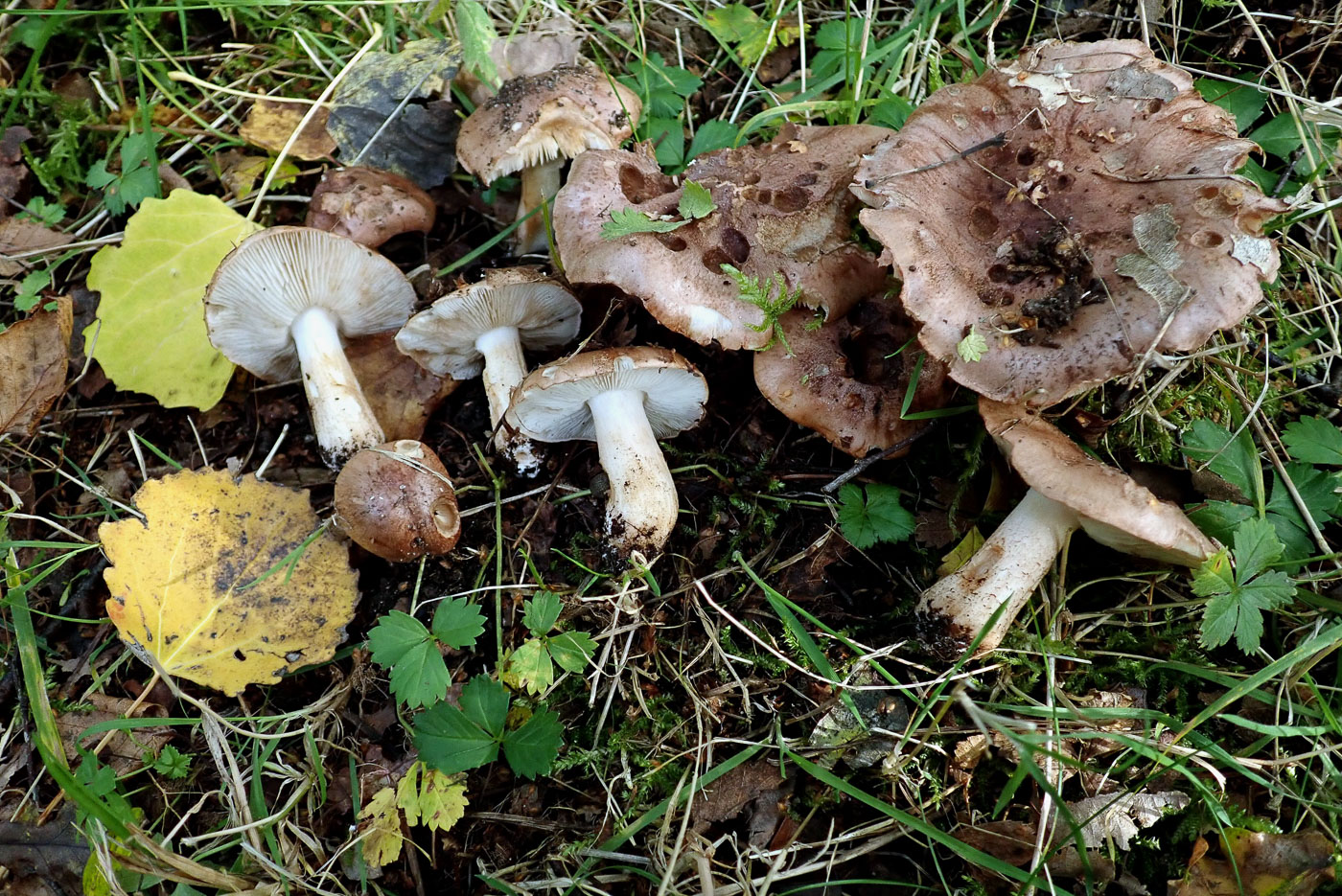
|
October 19th Tricholoma populinum (Poplar Knight)
Penny C. noticed a cluster of unfamiliar mushrooms in grassy litter under mixed trees in Burnham Beeches. On picking one she noticed the Tricholomoid habit and strong mealy smell (of musty flour). Luckily Geoffrey Kibby was on hand and recognised the species from collections in Kew Gardens where it grows under Aspen. This is a rare Knight, known in England more or less south of the Thames, and always under Aspen or hybrid Poplars. So a new species for the site and the county and possibly also the further north it has been observed.
|
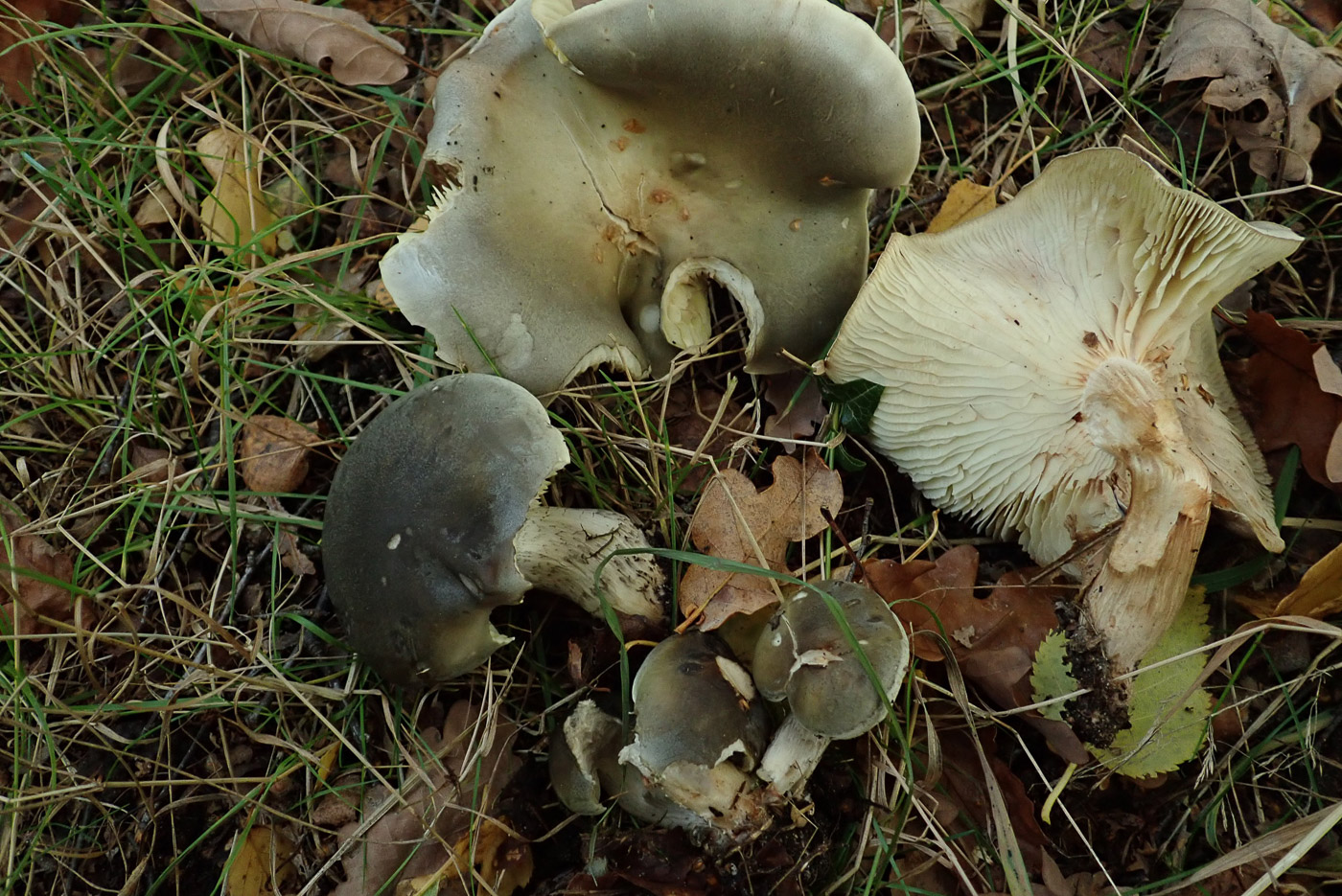
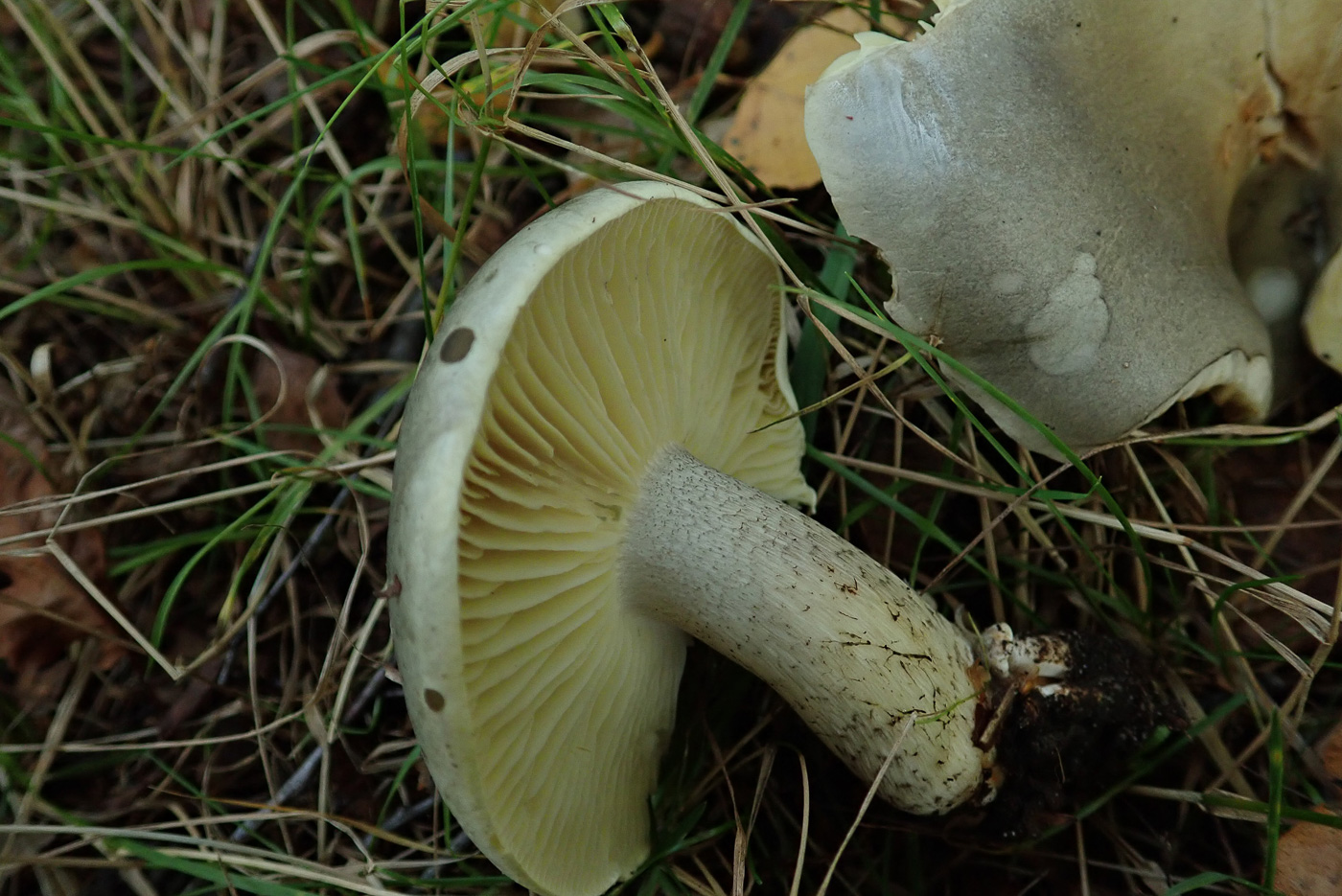 |
October 19th Tricholoma saponaceum (Soapy Knight)
We do have a previous photo of this species (dated Oct 14), but it is so variable a species and this collection from Burnham Beeches so different that it is worth including again. Found under Birch by Penny C., in contrast to our other photo these specimens had smooth caps with a distinct olive green tint, yellowish gills and a stem with faint black flecks (visible in photo 2) The common factor is the strong soapy smell.
|
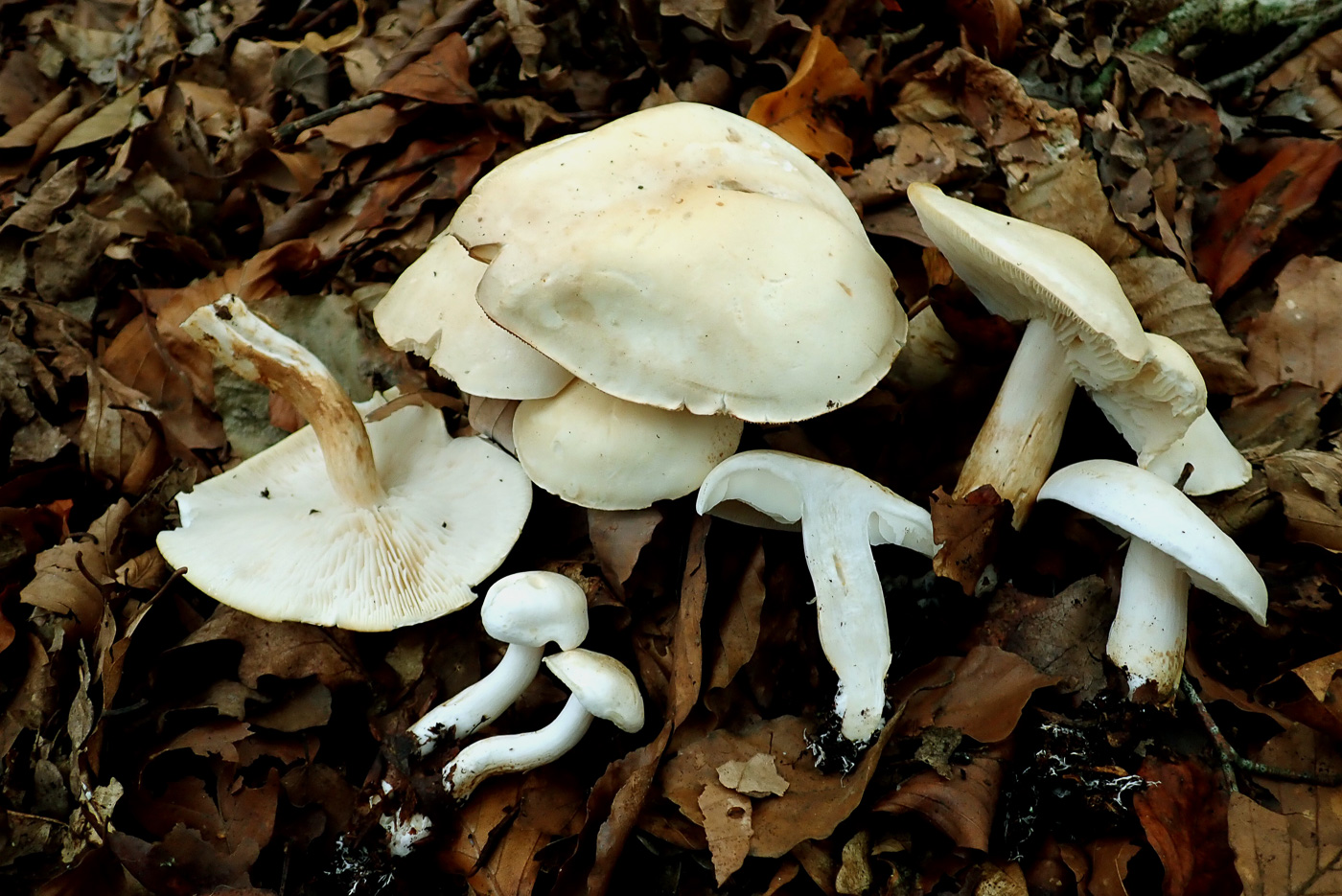 |
October 19th Tricholoma lascivum (Aromatic Knight)
This collection, found under Beech in Burnham Beeches by Geoffrey Kibby (photo Penny C.), completes our quartet of the white capped Knights. Three of these have unpleasant pervasive chemical smells but the fourth, T. columbetta, can be recognised by its lack of smell (see photo dated Oct 16). Today's species is by far the commonest and is found only under Beech whereas T. album (see photo dated Sept 26) is found only under Oak and T. stiparophyllum (see photo dated Oct 13) is found only under Birch. This sounds simple enough but so often they occur where there's mix of these trees present. Time to admit defeat and be satisfied with knowing that it must be one of these three!
|
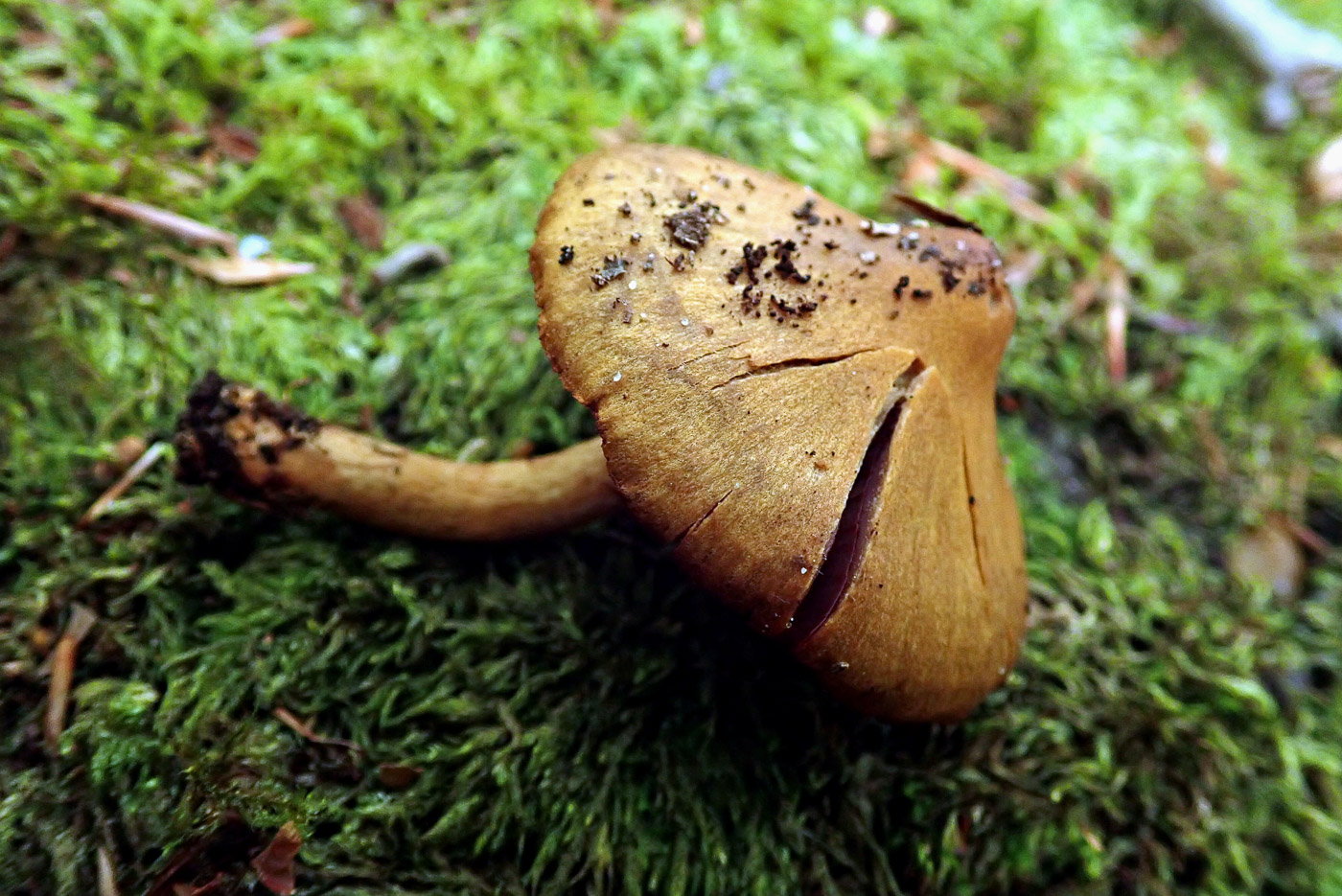
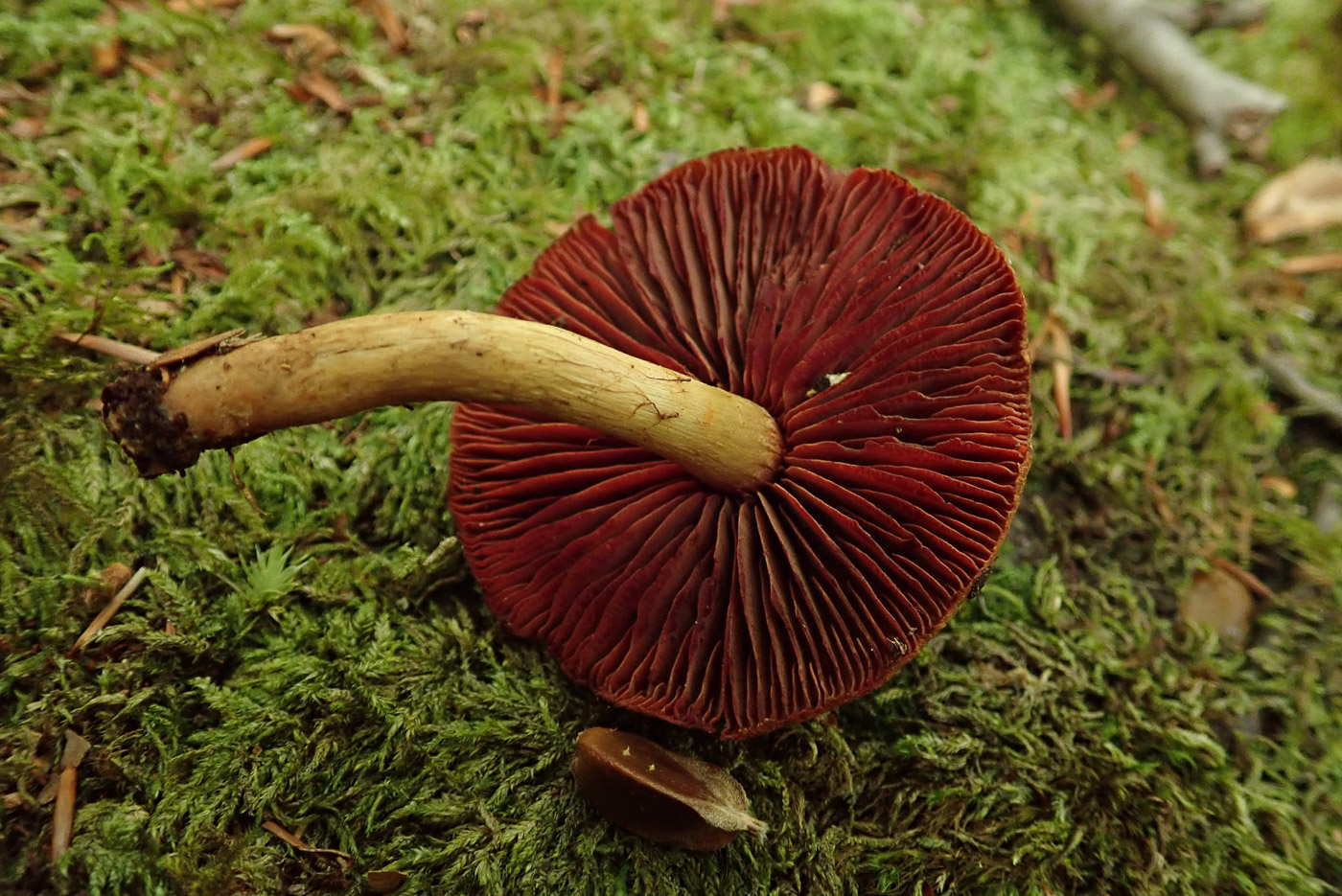 |
October 19th Cortinarius semisanguineus (Surprise Webcap)
At last a Webcap which is easy to recognise! Mario Tortelli found this singleton under Beech in Burnham Beeches (photo Penny C.) Though the ochre brown cap and stem colour are similar to many other medium sized mushrooms, turn it over for the surprise - bright red gills! This species is unique in having this combination of characters, hence the species name semisanguineus: half red. There are also a couple of Webcaps which are entirely red i.e. cap as well. So look out for one under Pine (C. sanguineus) or under Beech and Oak (C. puniceus)
|
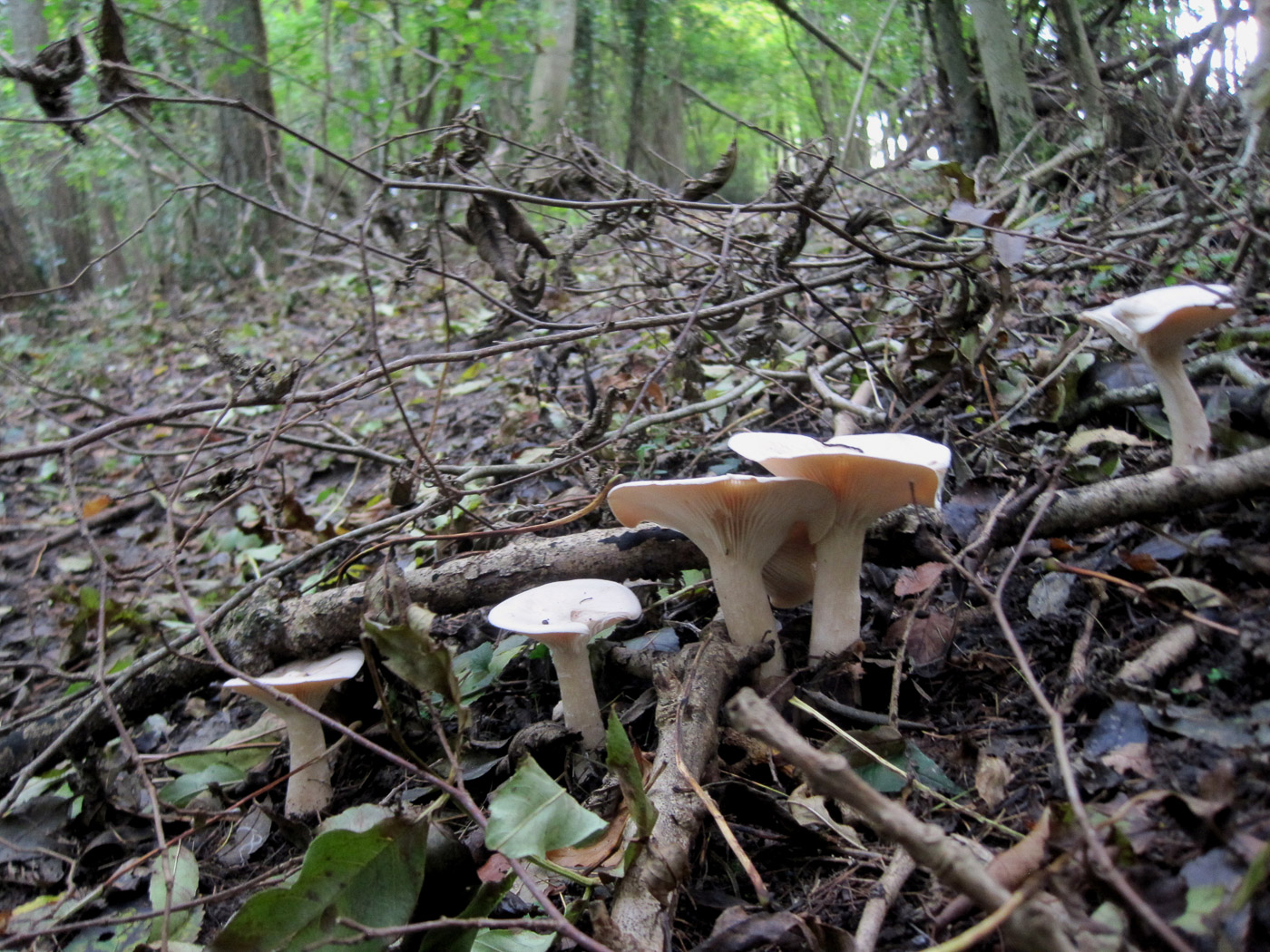 |
October 19th Clitocybe (Infundibulicybe) geotropa (Trooping Funnel)
A very common species with a new genus name, this was found in Long Wood, Holmer Green, in deciduous litter by Greg Douglas. One of the largest funnels and often confused when old with the equally large and common C. nebularis, the features to note are the strongly decurrent (sloping) gills and the raised bump in the cap centre (not really visible here). We hope to show more detailed photos in further examples.
|
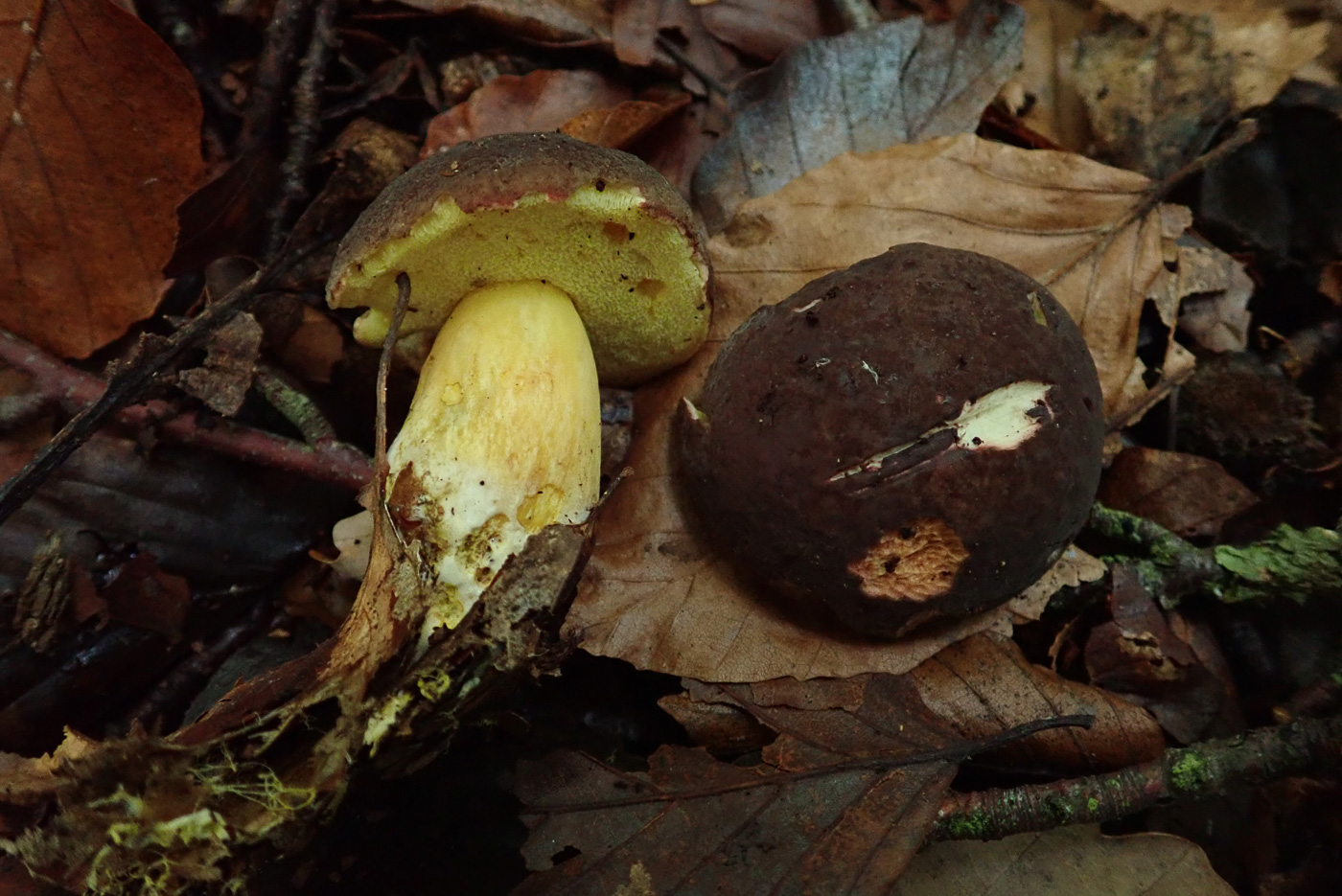
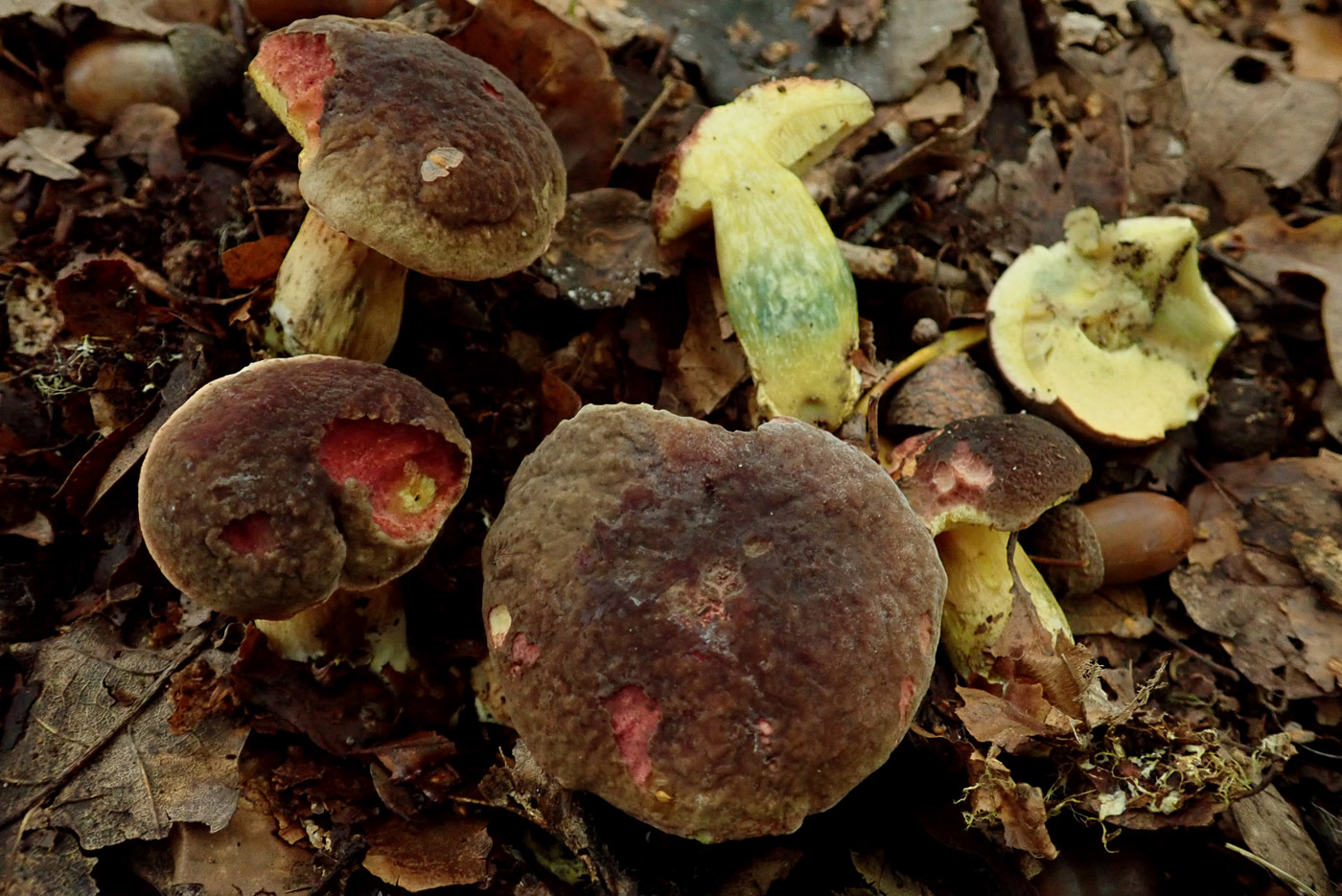 |
October 19th Xerocomellus pruinatus (Matt Bolete)
Penny C. found first two then a couple more specimens of this distinctive bolete - one which has features to separate it from the many very similar and confusing members of Xerocomellus (previously in the genus Boletus). The rich warm evenly brown rounded cap has a felted slightly lumpy surface, the pores and stem are bright yellow and bruise blue but only slowly, the stem has yellow flesh within and at its base has yellow mycelium which tends to bind to the litter (visible in photo 1) It is common under Beech.
|
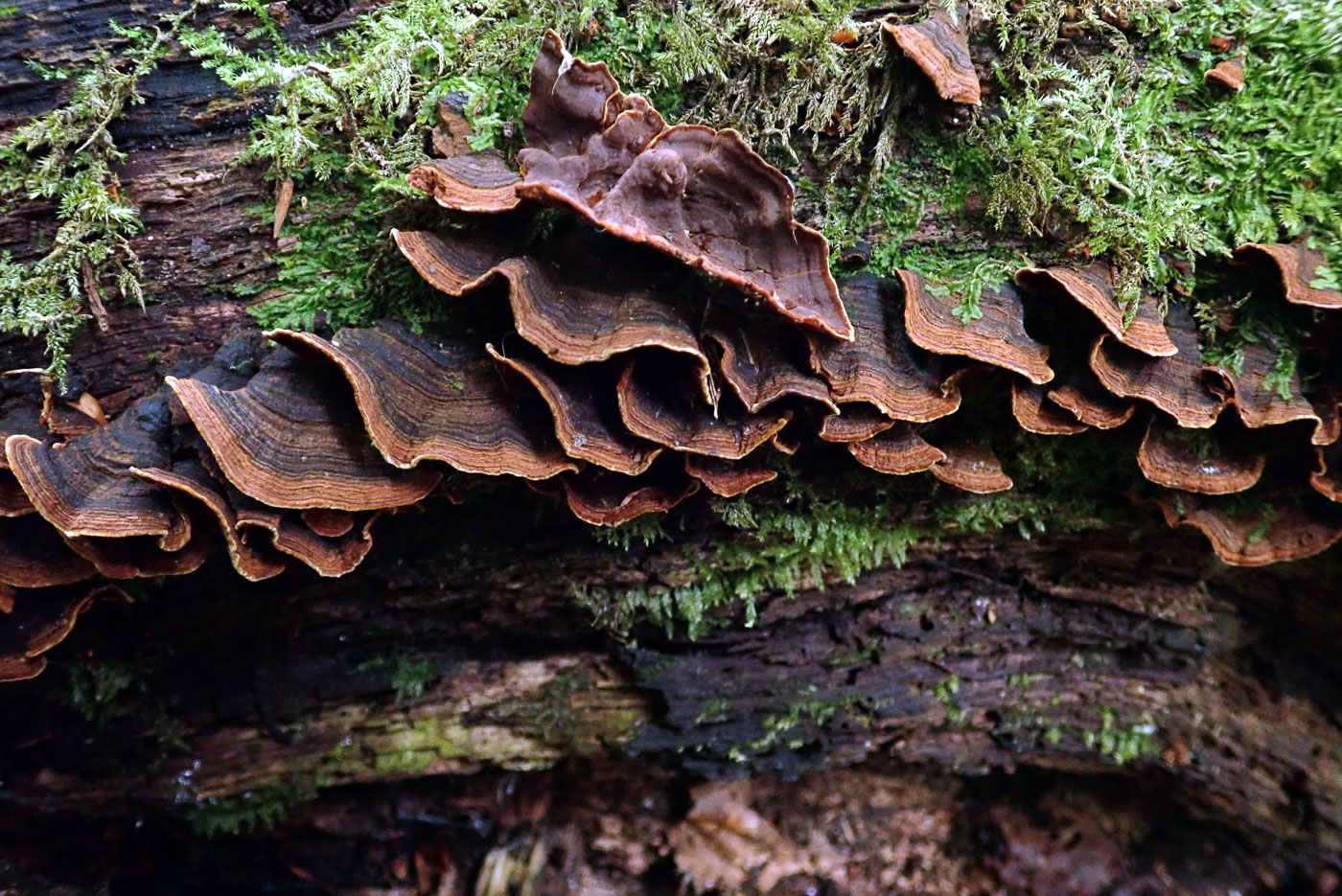 |
October 19th Hymenochaete rubiginosa (Oak Curtain Crust)
This colony of dark brown tiered brackets was found by Penny C. on fallen Oak in Burnham Beeches. It is similar in size., style and shape to the much more common Stereum hirsutum (see photo dated Sept 25) but is always this deep brown colour, both on the upper surface and underneath - the central top piece in the photo has been turned over to show this. It is only found on fallen Oak.
|
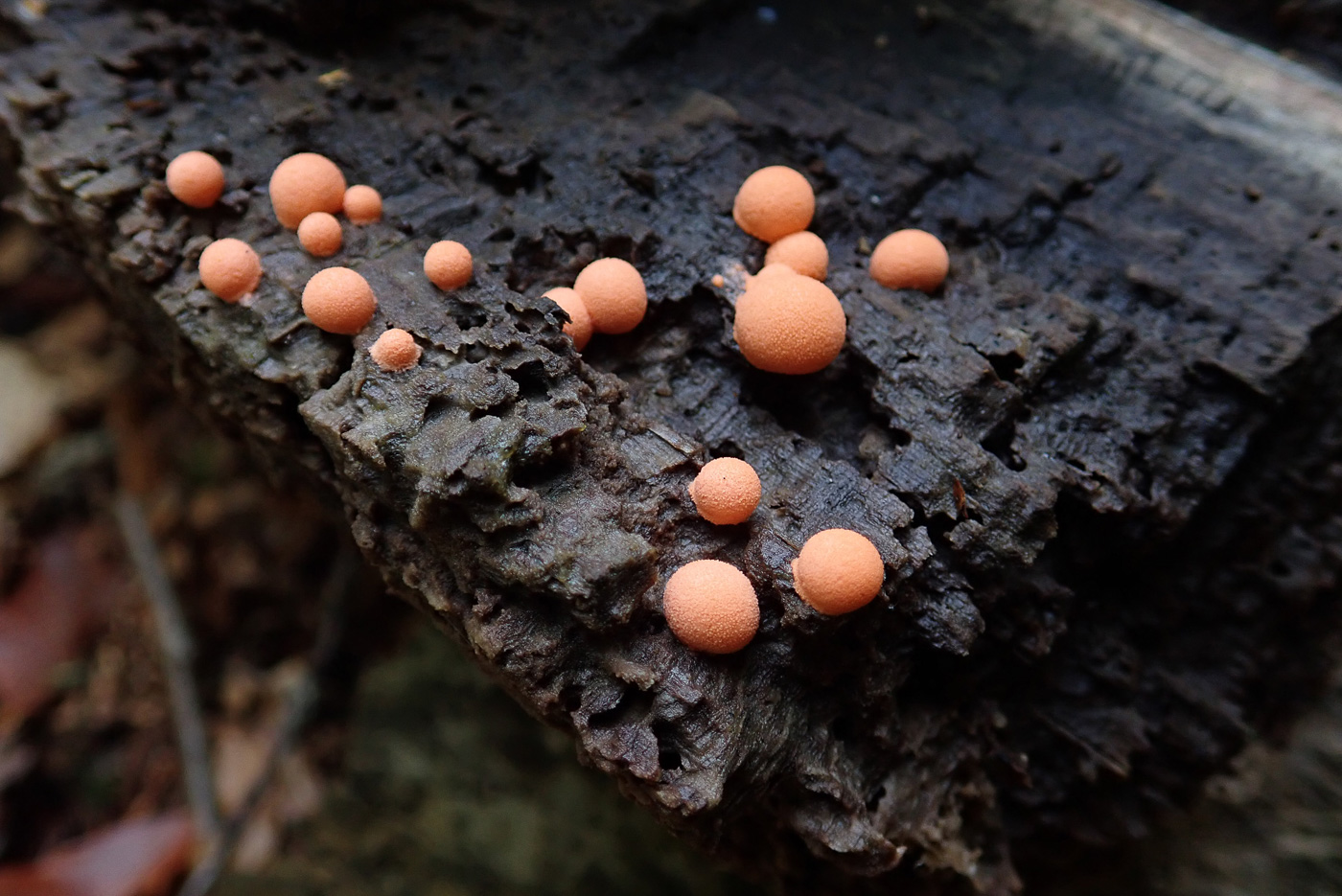
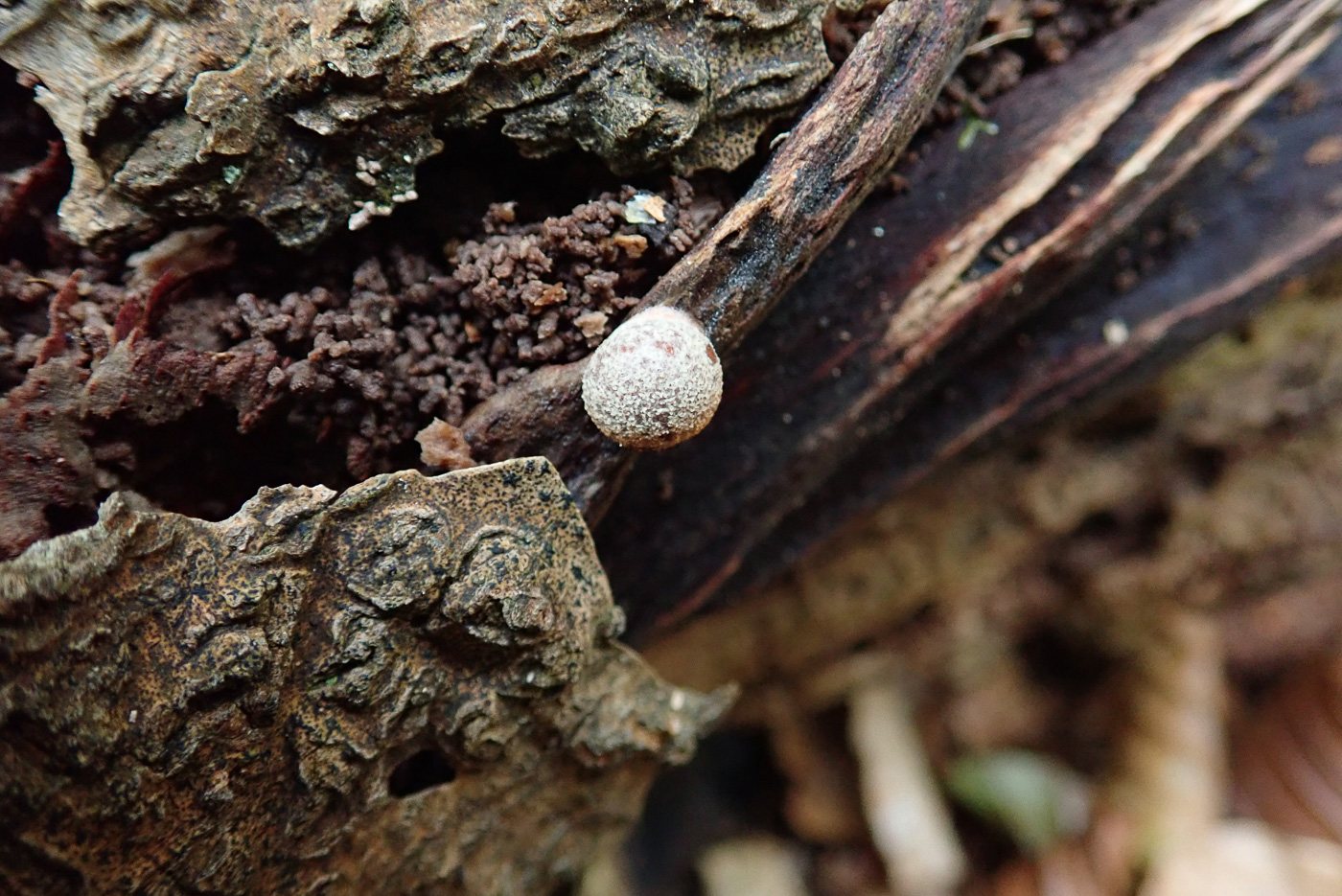 |
October 19th Lycogala terrestre (Wolf's Milk
Penny C. noticed this collection on a rotting deciduous log in Burnham Beeches. Not a fungus but a slime mould, it is common and easy to spot for obvious reasons though each blob is less than 1 cm across. When still this colour it is not yet mature and if touched just collapses, but it turns pale beige as it dries off (see photo 2 where there was one mature fruit body on the opposite side of the log) and gradually breaks down to release the spore mass within.
|
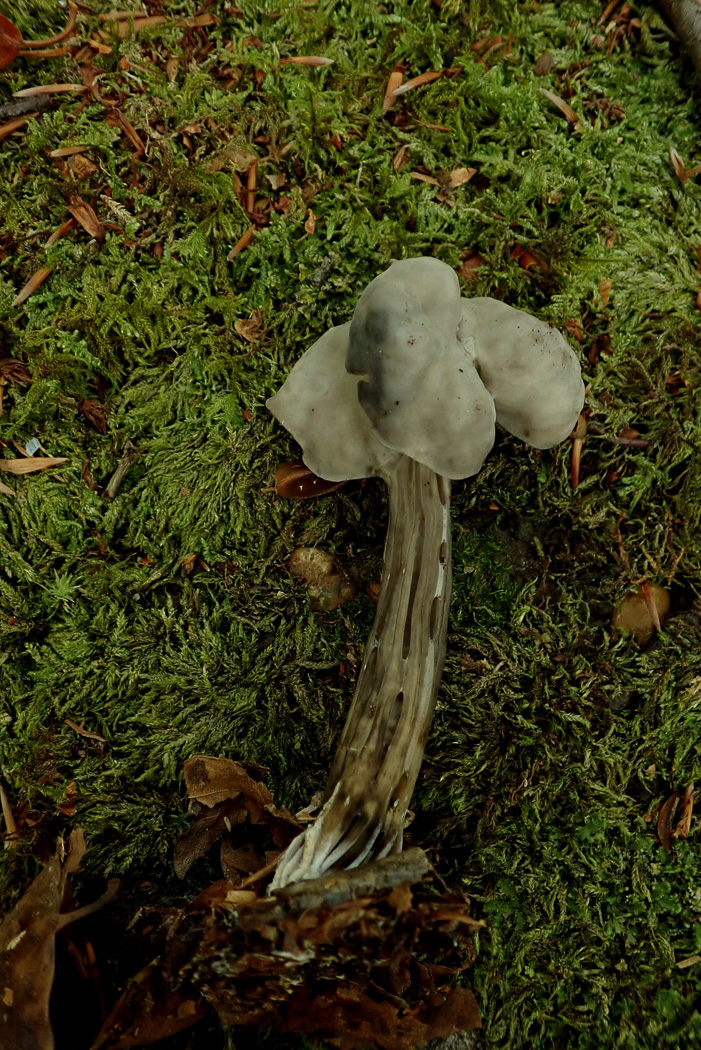
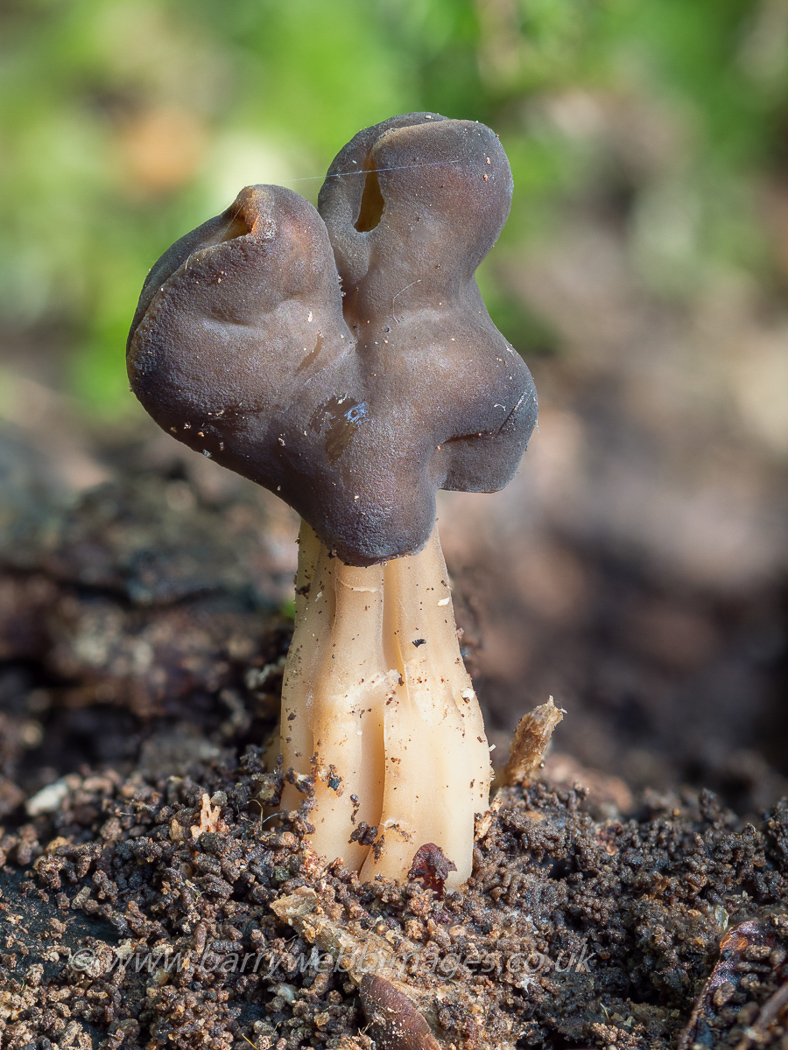
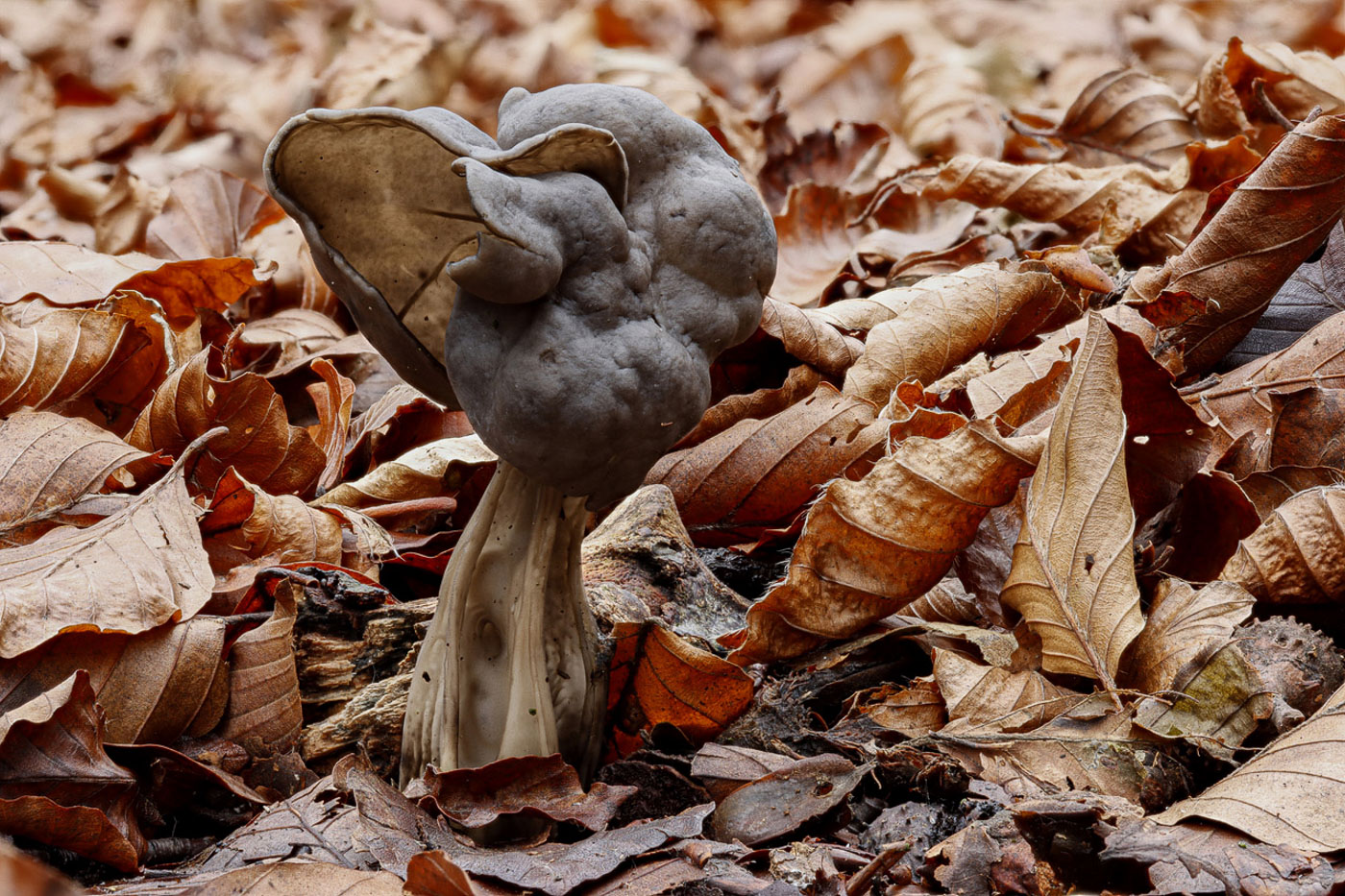 |
October 19th Helvella lacunosa (Elfin Saddle)
Claudi Soler found this singleton in Beech litter in Burnham Beeches (photo Penny C.) There is obvious similarity between this species and the much more common White Saddle (dated Oct 5th) though the dark grey colour makes it less easy to spot amongst the litter and it is generally slimmer with a smaller head - this particular example was rather paler than sometimes. Photo 2 shows a darker and younger specimen found here by Barry Webb on Sept 29th; photo 3 shows a specimen from Bradenham Woods found by Paul Goby on Nov 16th.
|
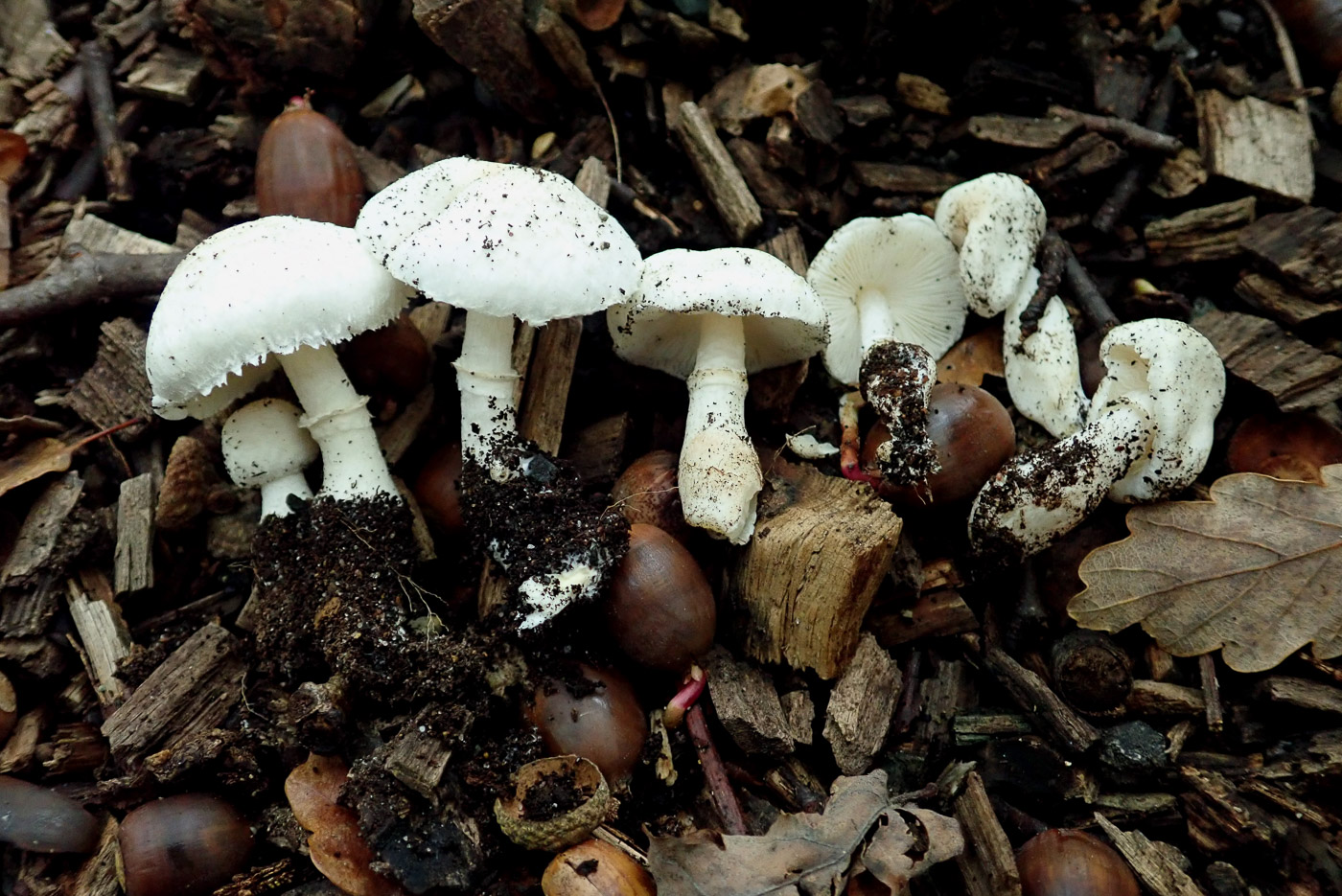 |
October 19th Leucoagaricus sericifer (a Dapperling with no common name) 
Claudi Soler found this rare species on the same woodchip pile as the Melanophyllum in Burnham Beeches - identified by Geoffrey Kibby, photo Penny C. An all white species with a silky cap and delicate ascending ring on the stem which is soon lost, this was a nice find as we have only one previous county record. Caps can get to 4.5 cms across but these were smaller, and it occurs in deciduous woodland usually on soil.
|
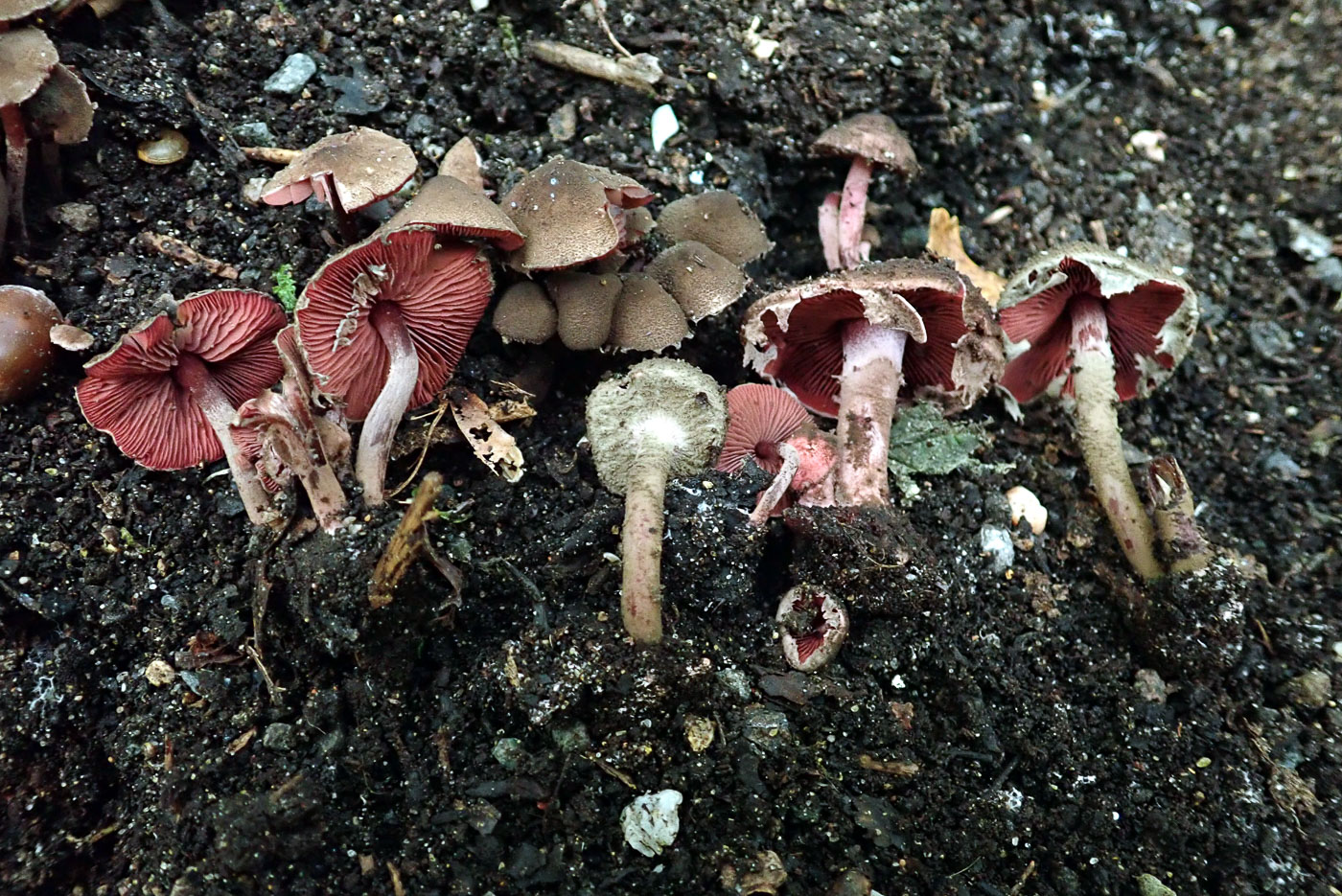 |
October 19th Melanophyllum haematospermum (Redspored Dapperling)
This distinctive species has the privilege of being our 300th of season on this webpage!! It was found by Penny C. amongst stinging nettles on a well rotted woodchip pile in Burnham Beeches. The rather dull dark cap is nothing to write home about, but turn one over and you're in for a surprise! This is the only mushroom to have red spores and such crowded red gills. It is loosely related to the genus Lepiota (hence the name Dapperling); note also the torn membranous covering - still in place on the youngest specimen at the front - which adheres to the cap margin as the fruit body expands. Not that common a species, but not rare though easily overlooked unless you pick one!
|
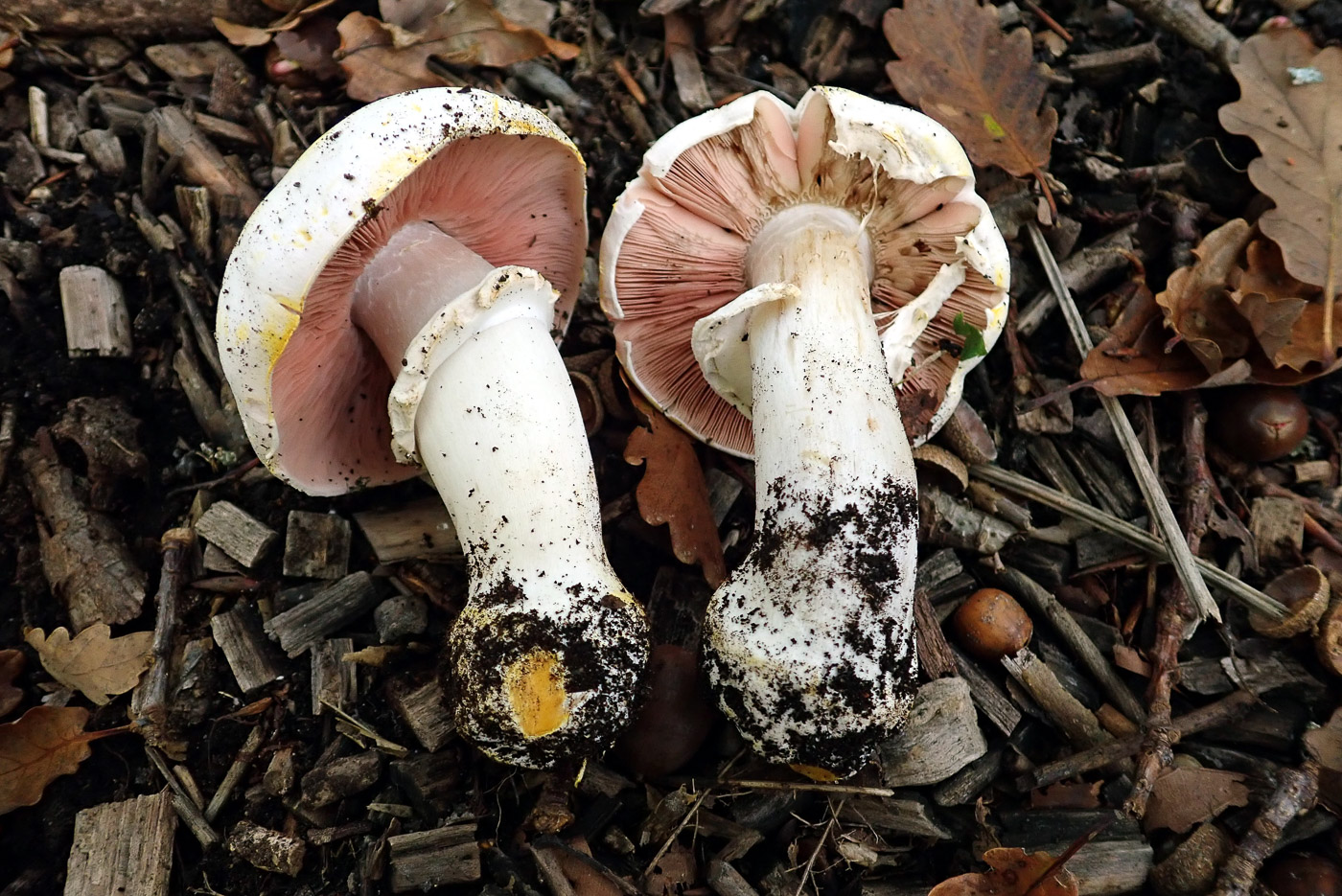 |
October 19th Agaricus xanthodermus (Yellow Stainer)
We have this species already, dated Sept 10th, but these were such pristine specimens - growing on a large woodchip pile at Burnham Beeches and found by Claudi Soler (photo Penny C.) - that we felt it was worth including. it's quite late in the season to be finding this but all the salient features are showing nicely.
|
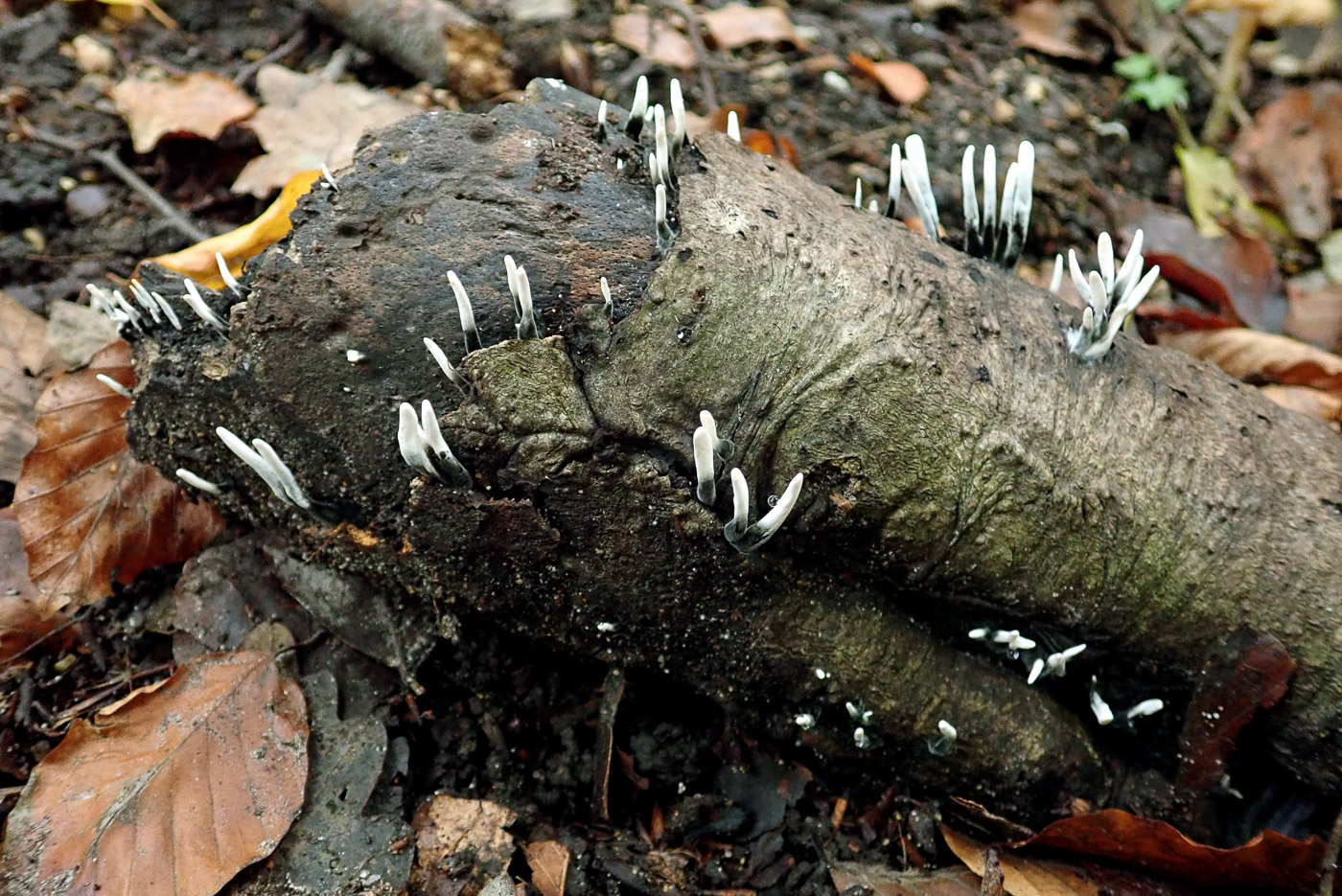
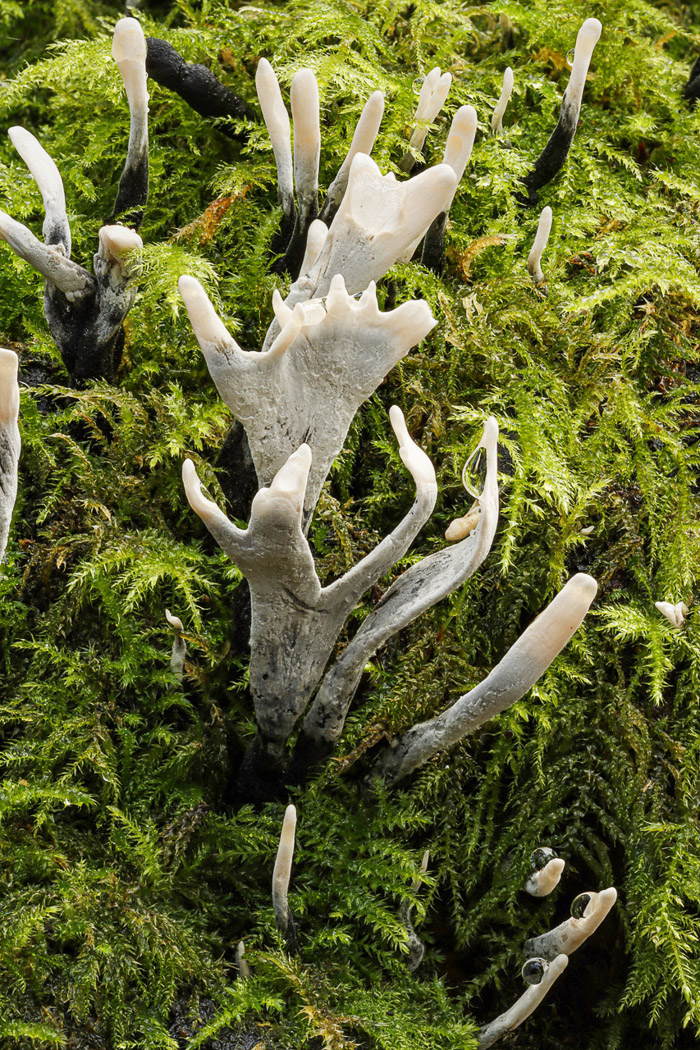 |
October 19th Xylaria hypoxylon (Candlesnuff Fungus)
Penny C. found this fruiting on fallen Beech at Burnham Beeches. This is one of the commonest Ascomycetes and can be found on fallen deciduous wood but seems to have been late to get going this season and only just reaching a size worth illustrating. The spores form on the white tips and if mature one can flick them and see a small puff as they disperse. Photo 2 (from Naphill Common two days later, Paul Goby) shows how the individual spikes sometimes fuse together forming an antler-like shape.
|
October 18th 2020
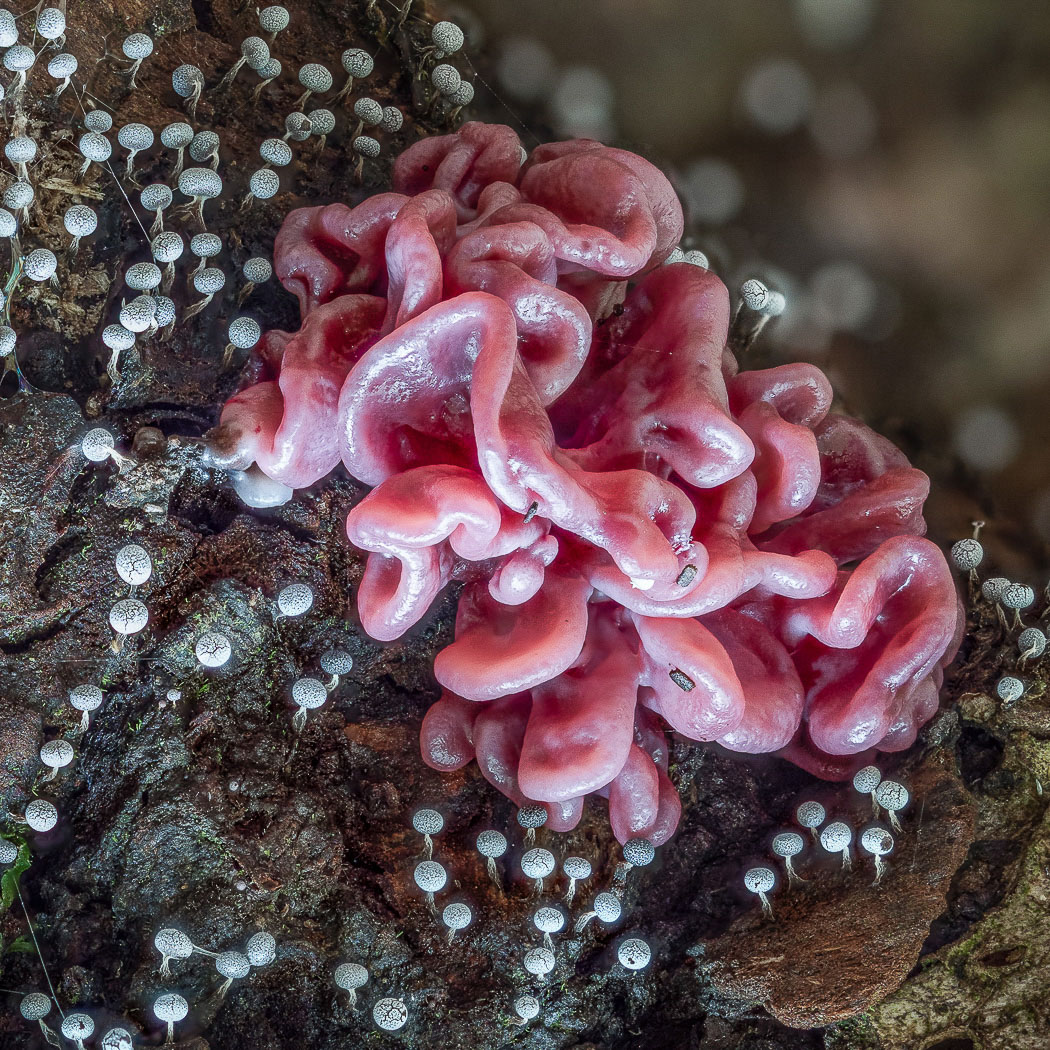 |
October 18th Physarum sp. with Ascocoryne sarcoides ( a species of Slime Mould with Purple Jellydisc)
Gill Ferguson found these two species together on rotting wood, presumable Beech, in Burnham Beeches. There are many different species of the Slime Mould genus Physarum and without recourse to a scope (sometimes even with one!) it is not possible to name them to species. The Ascomycete Ascocoryne we do have a previous photo, dated Oct 06, but this is a lovely example and a very attractive photo as well.
|
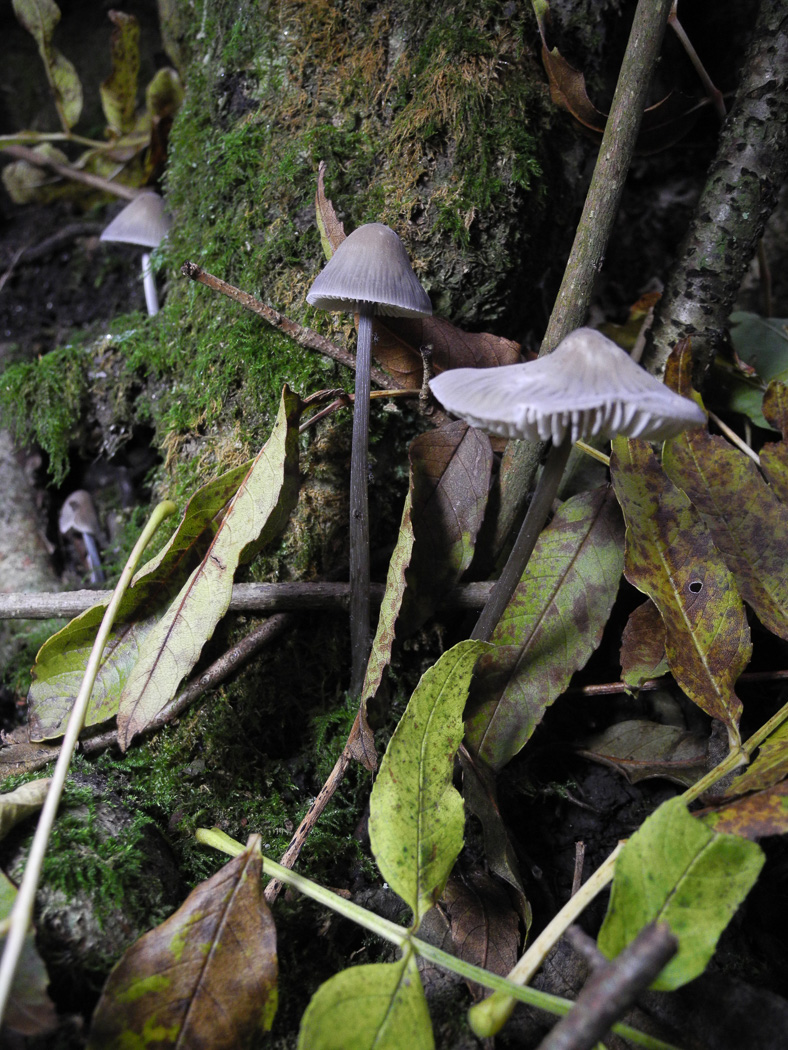
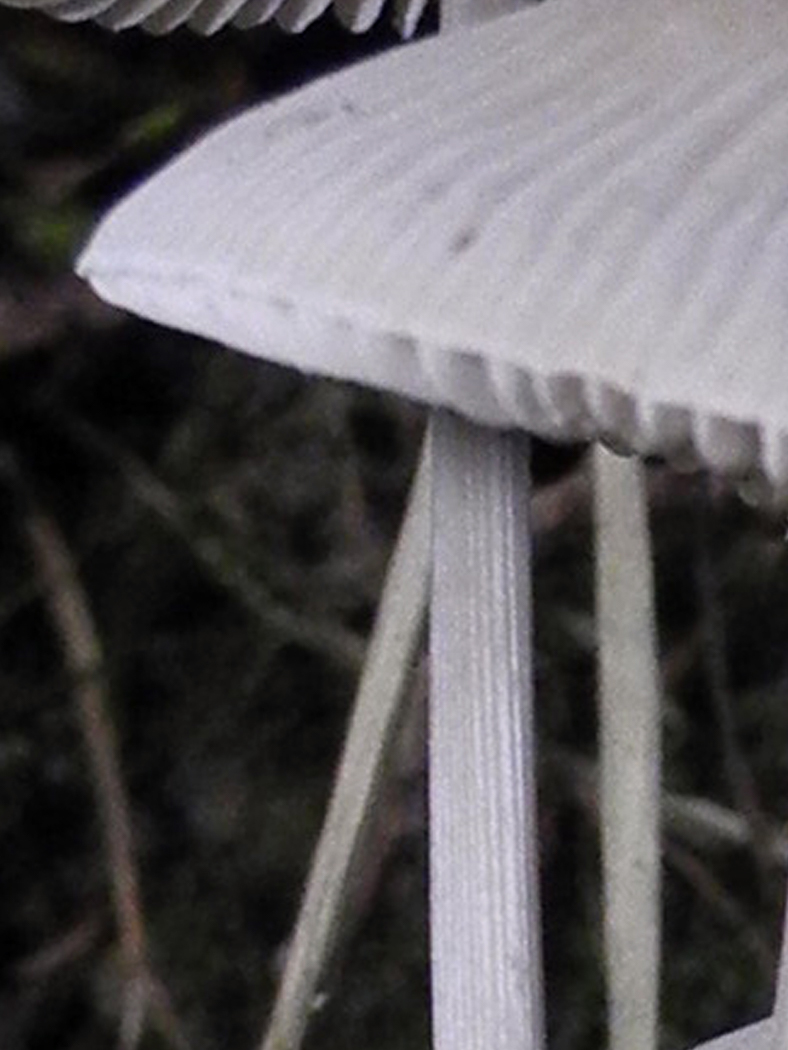 |
October 18th Mycena polygramma (Grooved Bonnet)
Antony Knight found (and identified) this group of Bonnets fruiting on the roots of Ash in Rushbeds Wood. It is very similar to other wood inhabiting Bonnets of medium size and easily mistaken for M. galericulata (Common Bonnet). However, with care you can recognise that it's different in the field with its rather grey tones to cap and stem and, more importantly, the fine longditudinal grooves on the stem - its unique field character and seen here in photo 2. However, these lines are not always present or nearly as obvious as they are in today's collection, in which case it's a matter of detective work with a scope to separate it from other likely contenders.
|
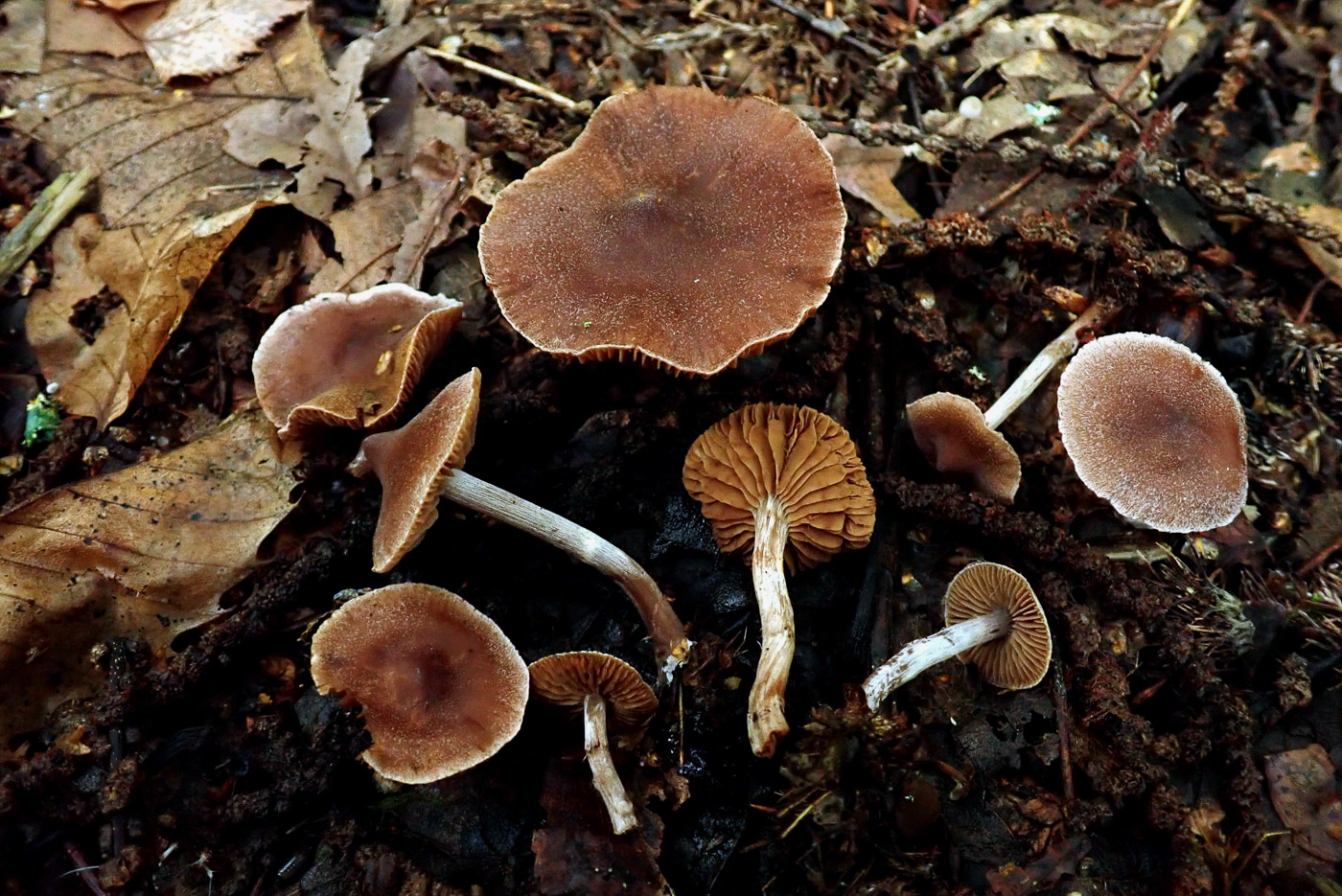 |
October 18th Cortinarius flabellus (a Webcap with no common name)
Penny C. found this collection under Sweet Chestnut at Pullingshill Wood, identified the next day by Geoffrey Kibby. A small member of the Telamonia group, it has a bright brown cap with a white margin and is covered in fine white hairs which show up as it dries. It can be found in large troups under various deciduous trees and is quite common.
|
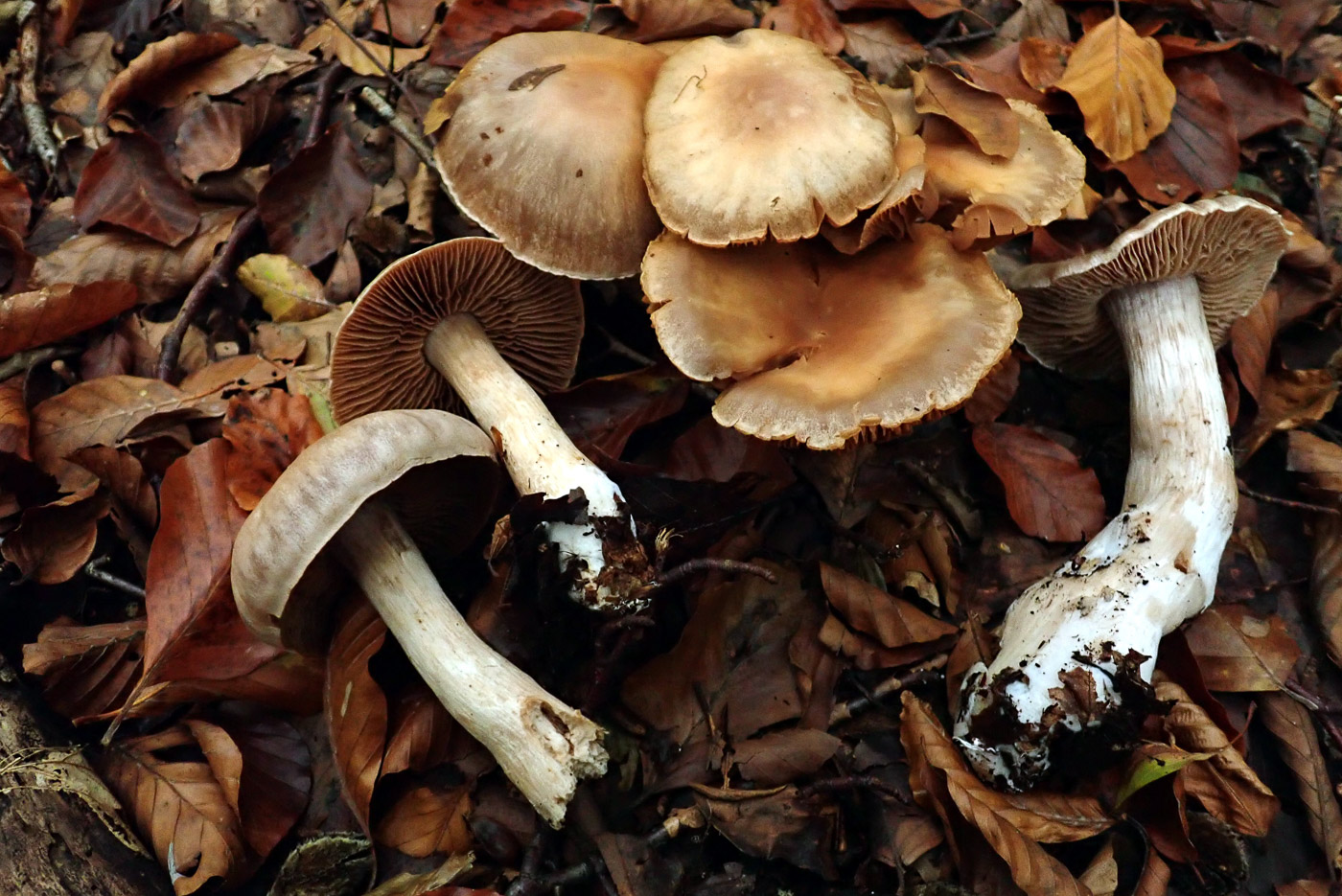 |
October 18th Cortinarius valgus (a Webcap with no common name
Penny C. found this collection on a road side bank under Beech at Pullingshill Wood, identified the next day by Geoffrey Kibby. This is a fairly large and common Webcap with a dry cap and stem (a member of the Telamonia group) and has a slightly two-tone cap and a silvery stem.
|
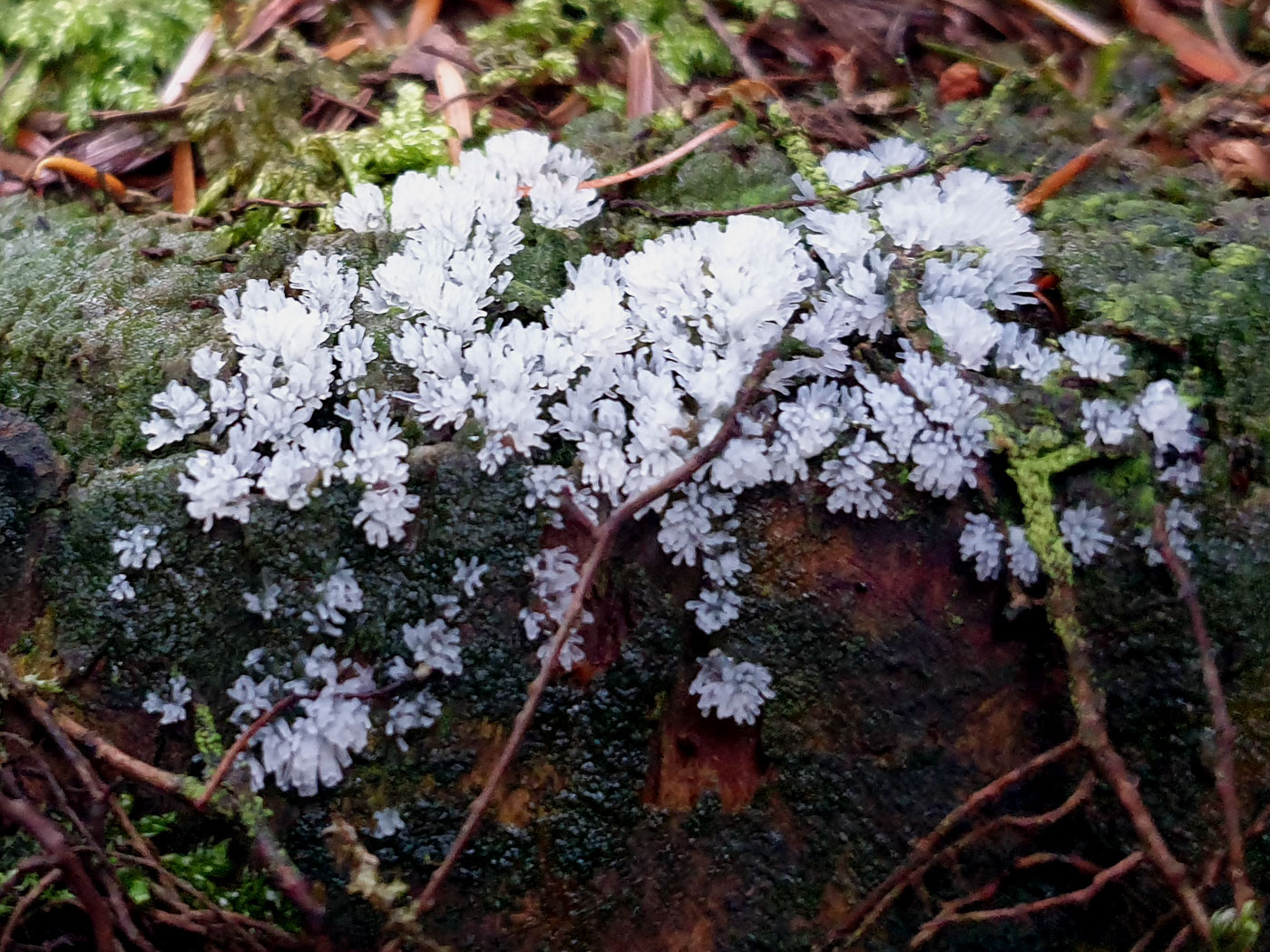
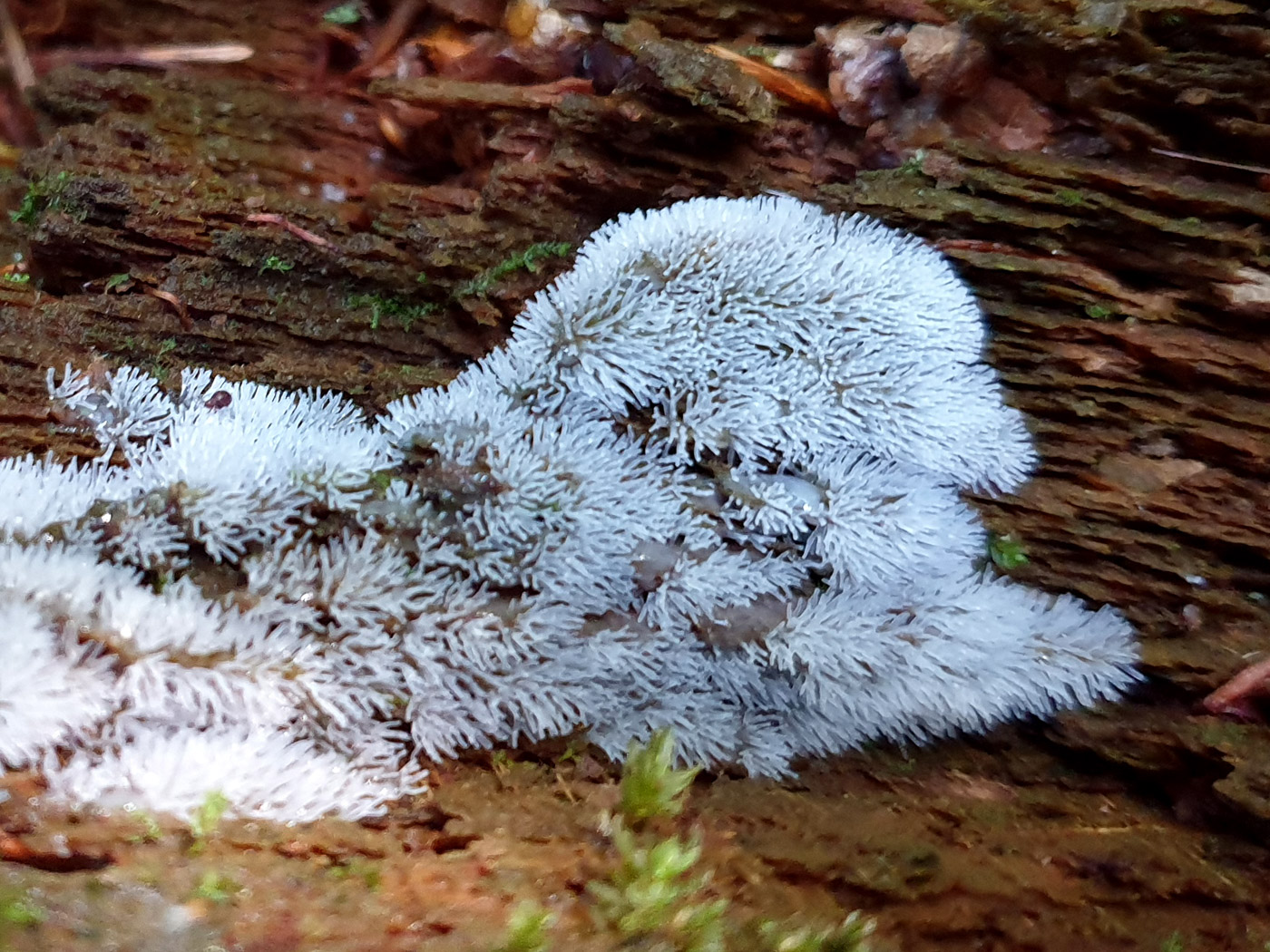 |
October 18th Ceratiomyxa fruticulosa (Coral Slime)
Justin Warhurst found this tiny and very pretty Myxomycete (Slime Mould) on rotting wood in Penn Wood. Quite a common species often to be seen in colonies on bare conifer stumps, it can be found on other fallen wood if sufficiently damp. Each fingerlike tendril is less than 5 mm high and photo 2 is of a more more developed colony. Slime Moulds are now known to belong to a Kingdom of their own but share some features with fungi and therefore are usually treated as honorary fungi, being recorded by mycologists.
|
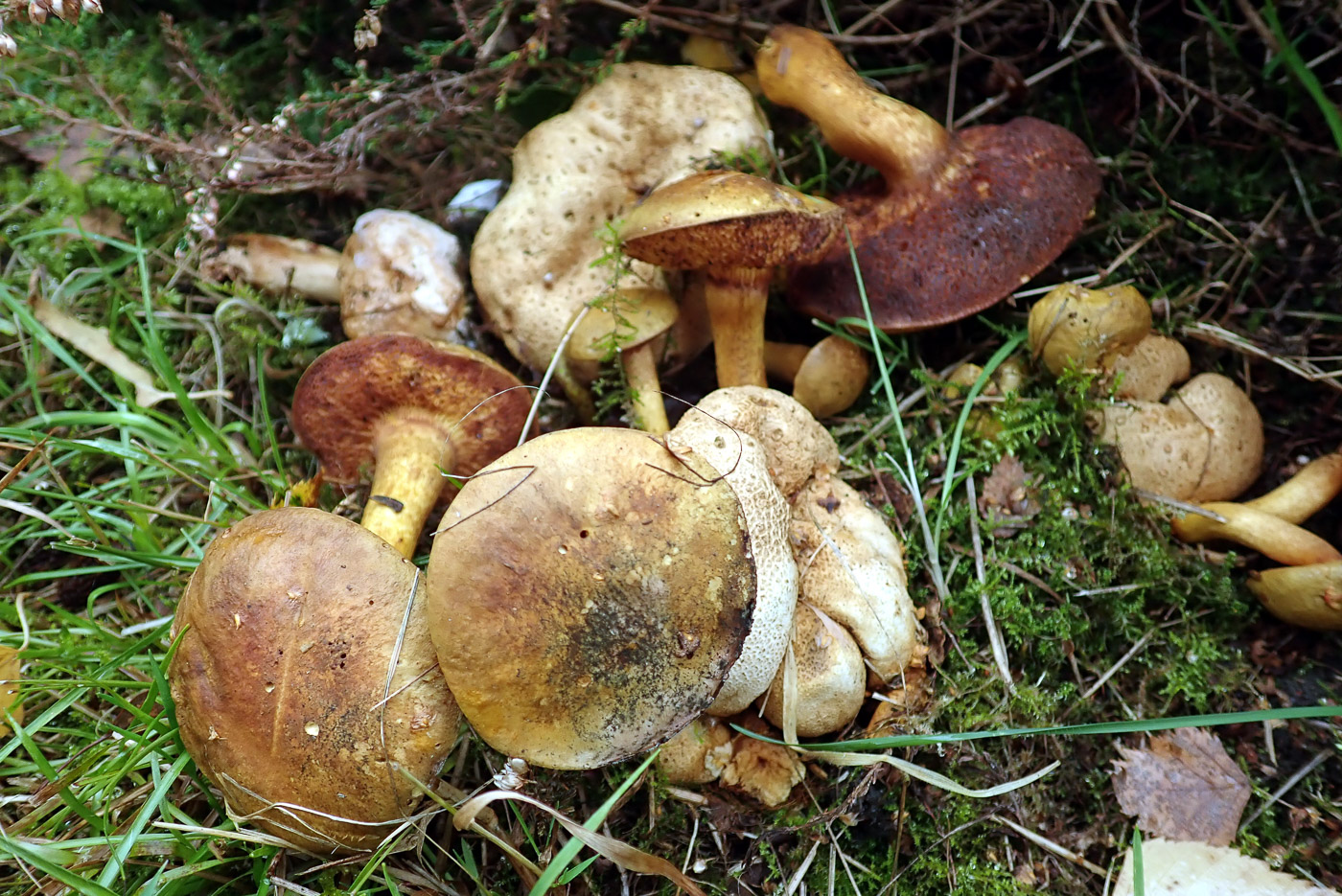 |
October 18th Pseudoboletus parasiticus (Parasitic Bolete)
Boletes are now in short supply having fruited in abundance through September, but here is one still to look out for wherever you see the Common Earthball- Scleroderma citrinum. Penny C. found this collection under a patch of heather in Marlow Common - a site renowned for the occurrence of both the species involved here. This unusual bolete is only found emerging from the sides of this particular Earthball species which can be seen here collapsing inwards presumably as the parasitic fungus consumes it as it grows. (See also our earlier photo dated Sept 26.)
|
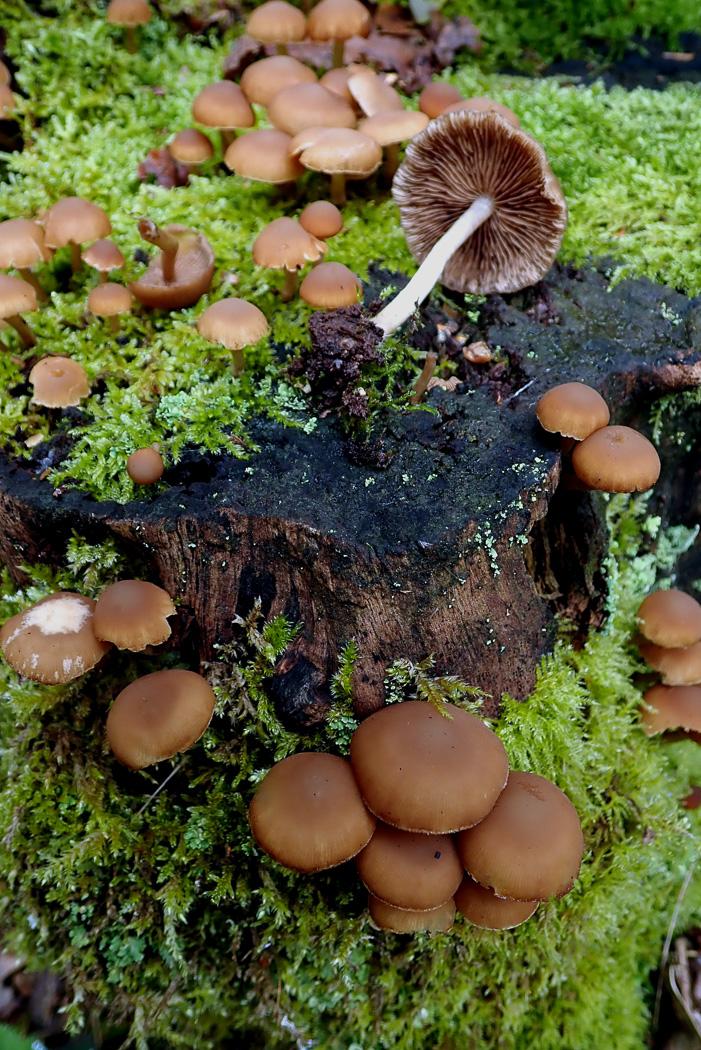 |
October 18th Psathyrella piluliformis (Common Stump Brittlestem)
We have an earlier example of this species (dated Sept 10) but of young material, and as there is much evidence of more mature clusters of this around at the moment, we are including it here again - found by Paul and Penny C. on a mossy deciduous stump in Marlow Common. Note the dark gills visible in the upturned fruit body, now coloured by the mature spores, also the veil flecks, visible on the cap in young material, have now been washed off leaving it smooth. This is one of our commonest Brittlestems and is usually to be found in large numbers on fallen rotting deciduous wood.
|
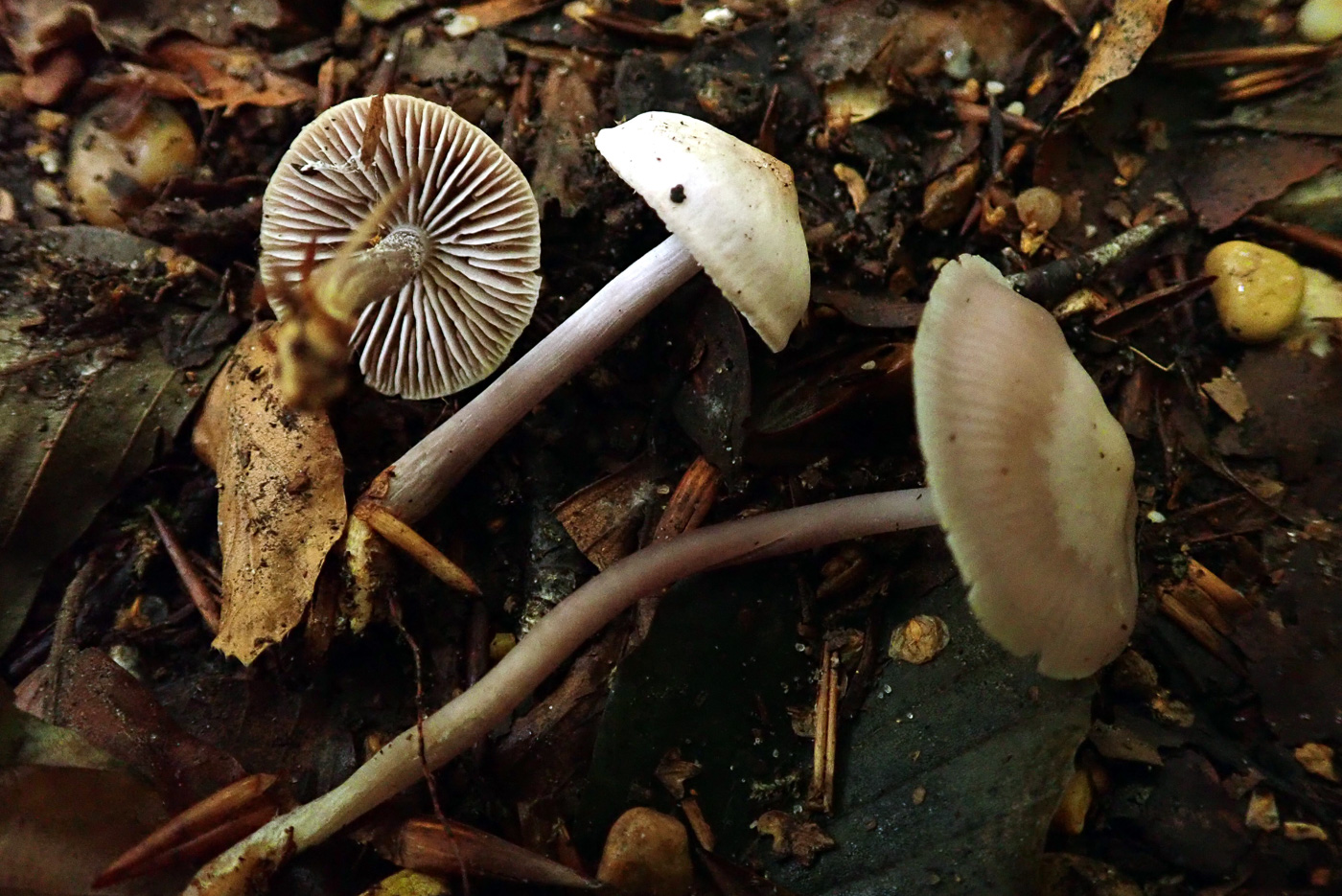
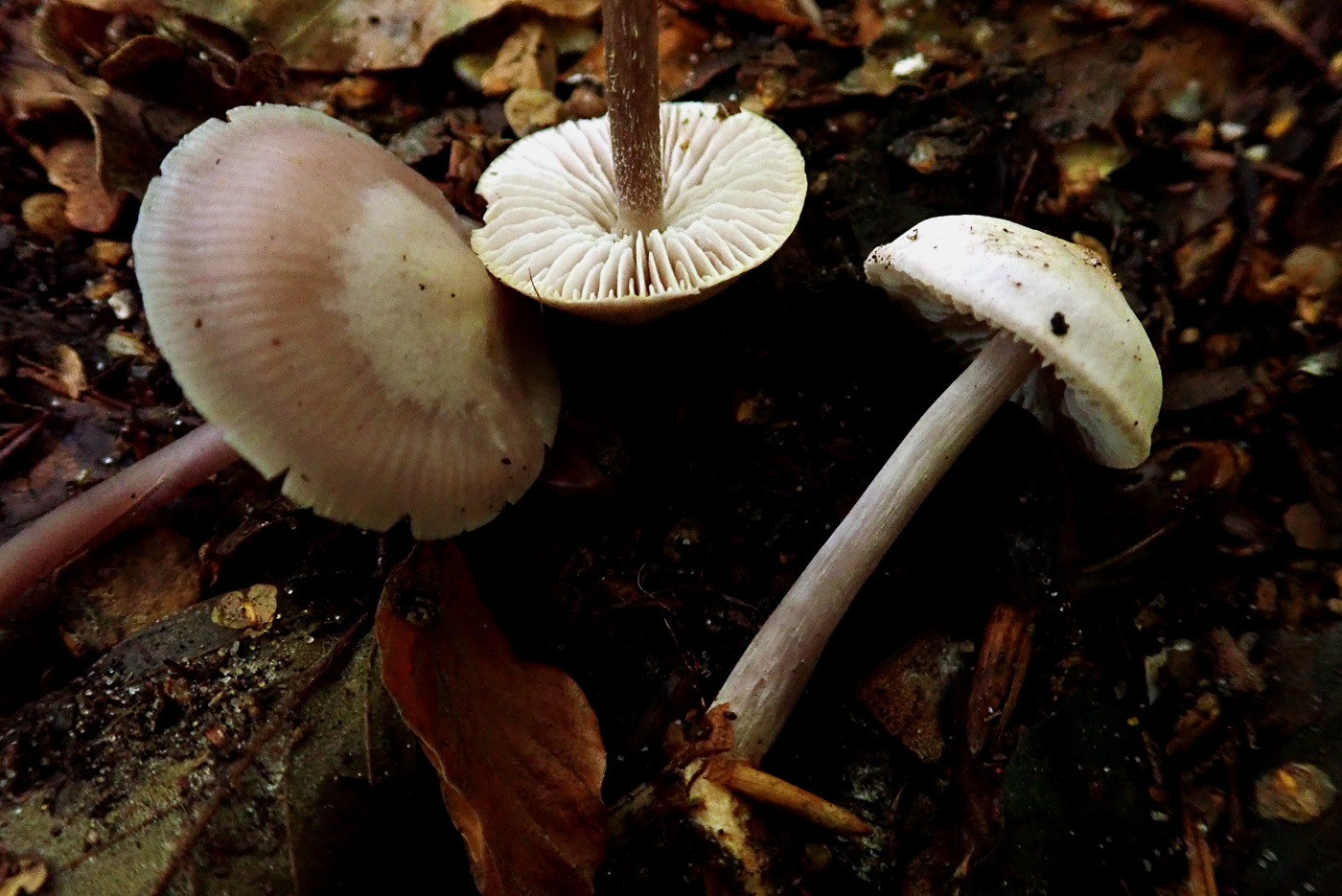 |
October 18th Mycena pura (Lilac Bonnet)
Emily Peace found just these three rather faded specimens of a normally common species of Bonnet in Hollowhill Wood (photo Penny C.). Closely related to the much more common M. rosea (Rosy Bonnet), there is often doubt about the difference between the two, especially as it's only in recent years that M. rosea has been split from M. pura, previously being just a variety of that species. Both favour Beech litter, but compare not just the colours but the shape of the two (see photo dated Oct 10 for M. rosea): the stem of M. rosea is notably narrowed at the top and wider at the base, also pale pink to white, but cylindrical in M. pura and with lilac tones as in the cap. Both will fade as they dry out, but when fresh M. pura has a distinctly lilac cap with a brownish tint; M. rosea is pure pink with no brown or lilac.
|
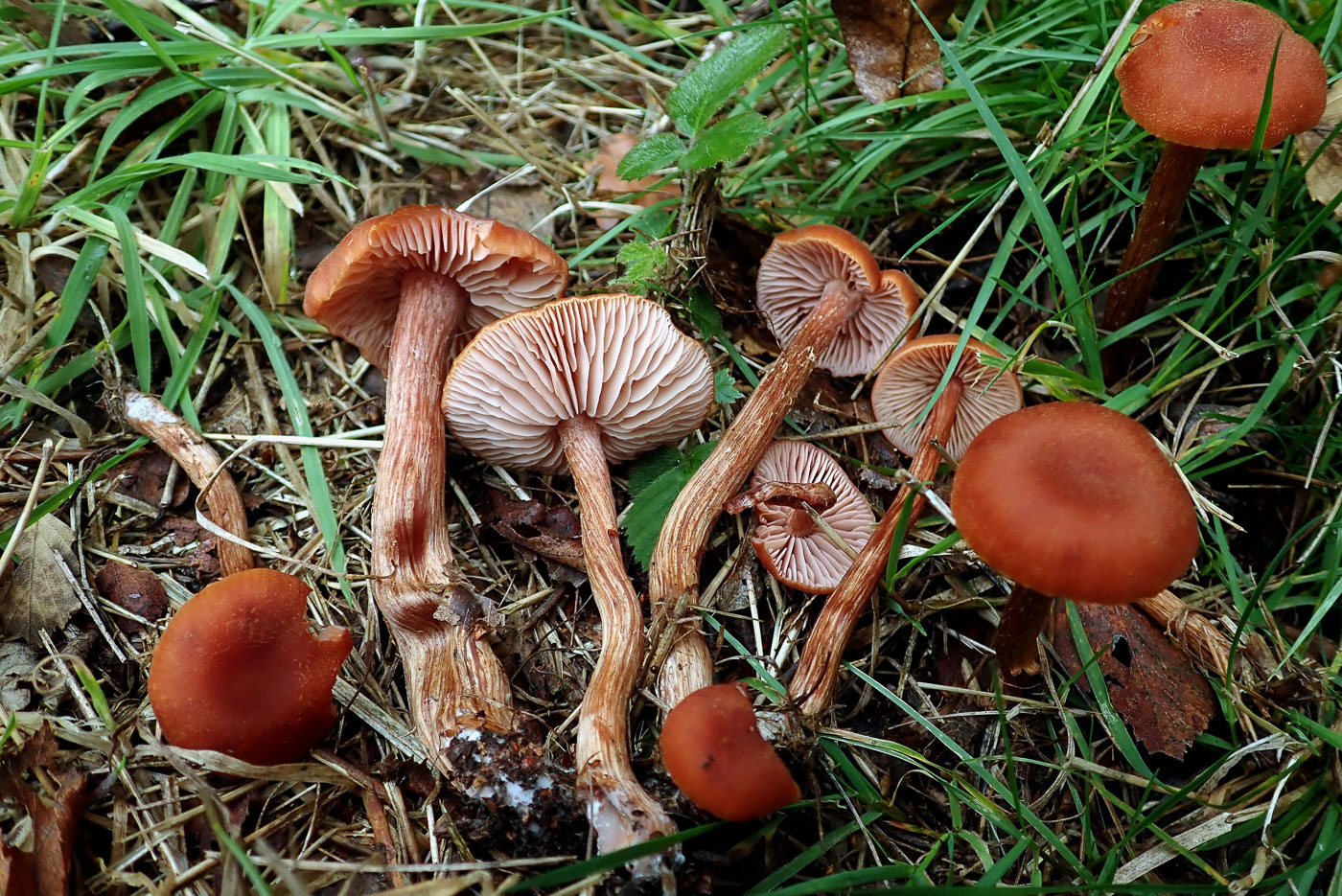
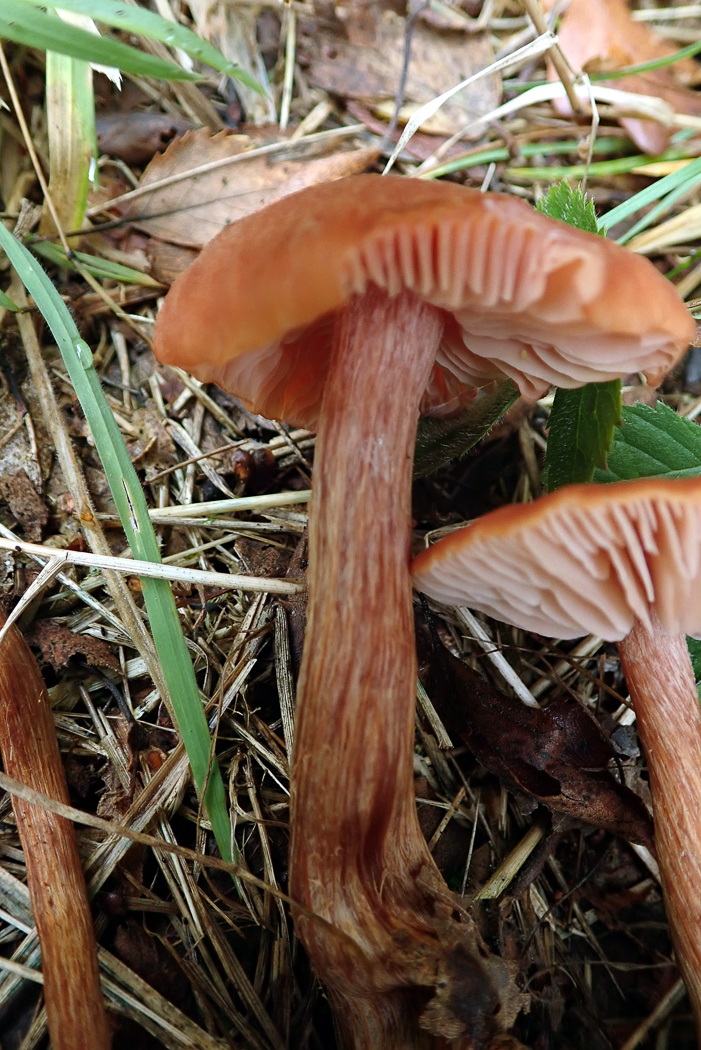 |
October 18th Laccaria proxima (Scurfy Deceiver) 
Paul and Penny C. found a good number of this species looking really pristine in a grassy glade in Marlow Common. This is the largest species of the Deceivers and is like an outsize L. laccata (Deceiver) though confusingly that species can sometimes grow as large on occasion! The stem is much more fibrous and the gills a bit paler than those of L. laccata, also it favours more heathland than woodland litter, but there is really only one way to be certain which species you have and that is to check the spore shape: round in L. laccata but oval in L. proxima.
|
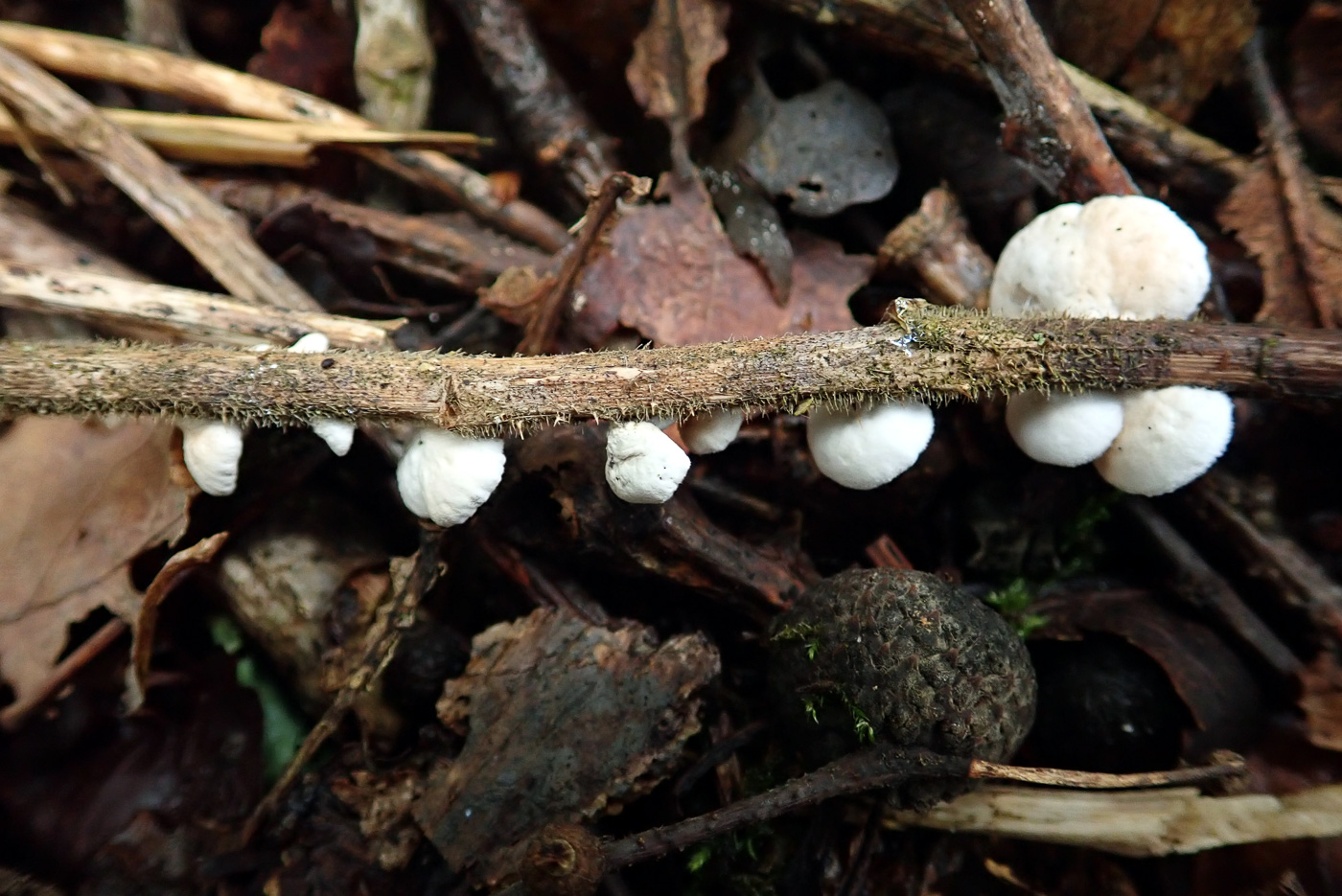
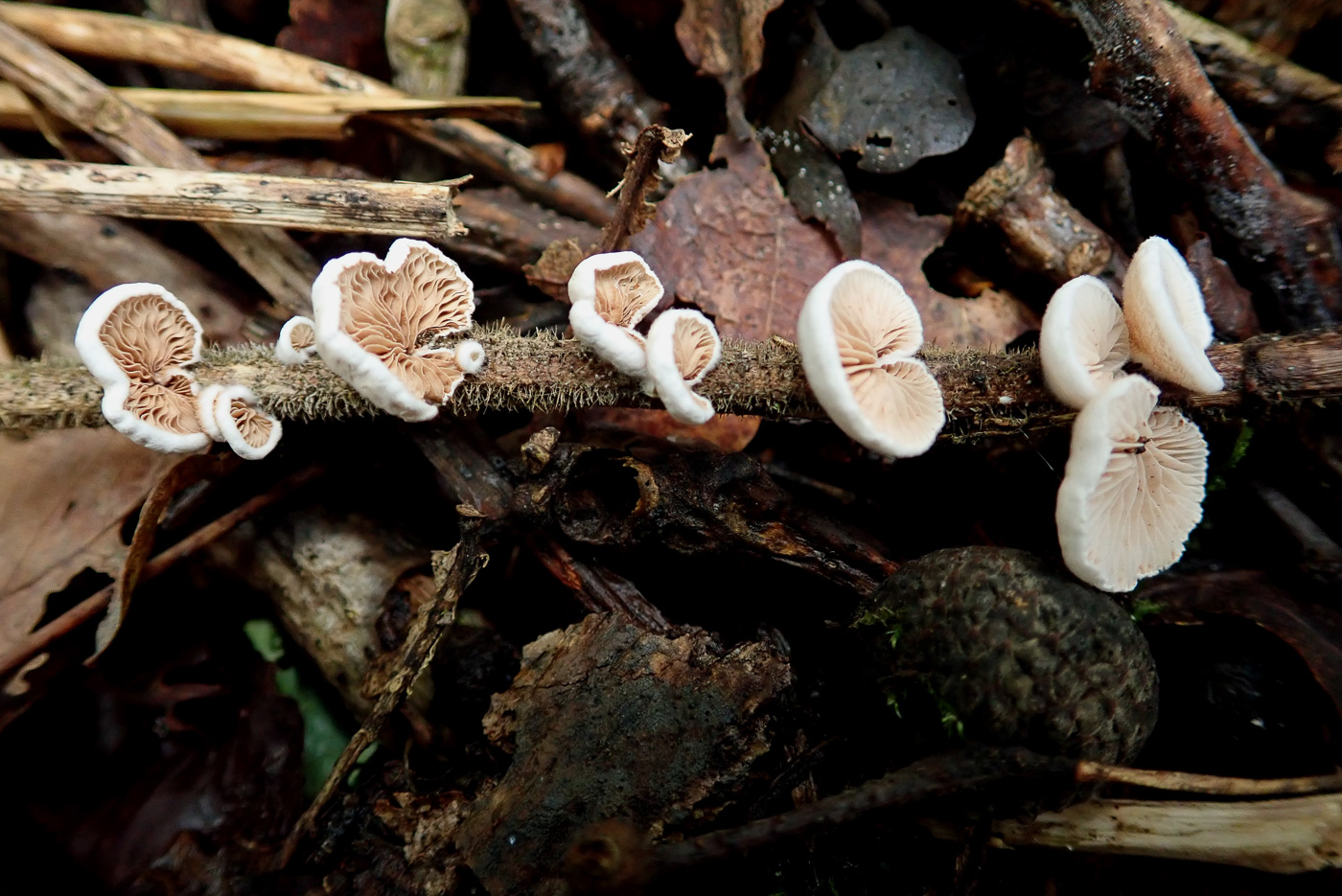
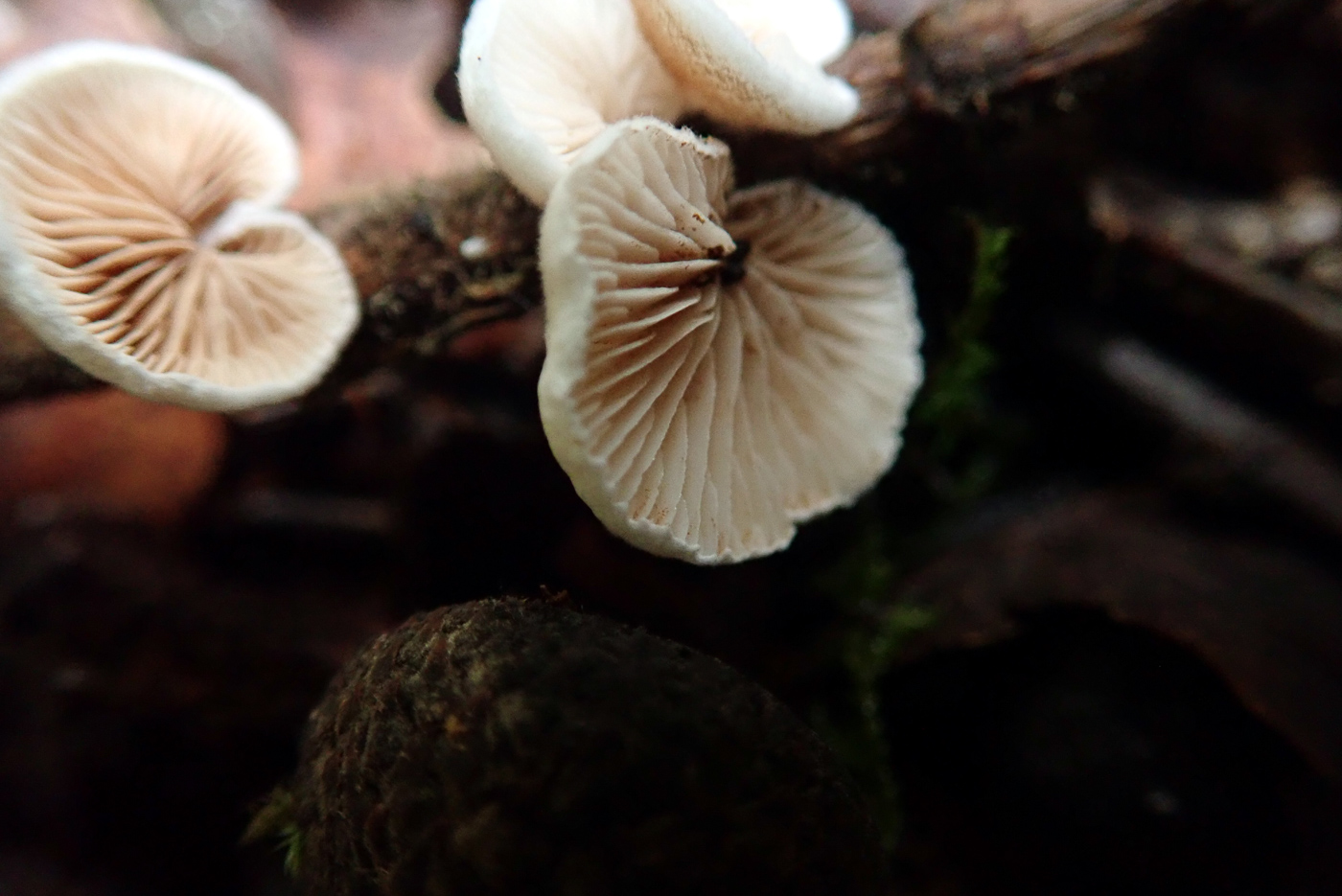 |
October 18th Crepidotus variabilis (Variable Oysterling) 
Penny C. found this little group on a dead bramble stem in Marlow Common. We have photos of two other common Crepidotus species so far, one of which (C. cesatii dated Oct 08) is very similar to today's and they can only be separated with certainty if the spores are checked - round in one and cylindrical in the other). This species can be found on dead twigs and various herbaceous stems as here and the caps are up to about 2 cms across. Note the lack of stem underneath and the shell-like shape with pinkish beige gills which reflect the spore colour of the genus. Do not confuse with the quite similar Panellus stipticus (dated Oct 03).
|
October 17th 2020
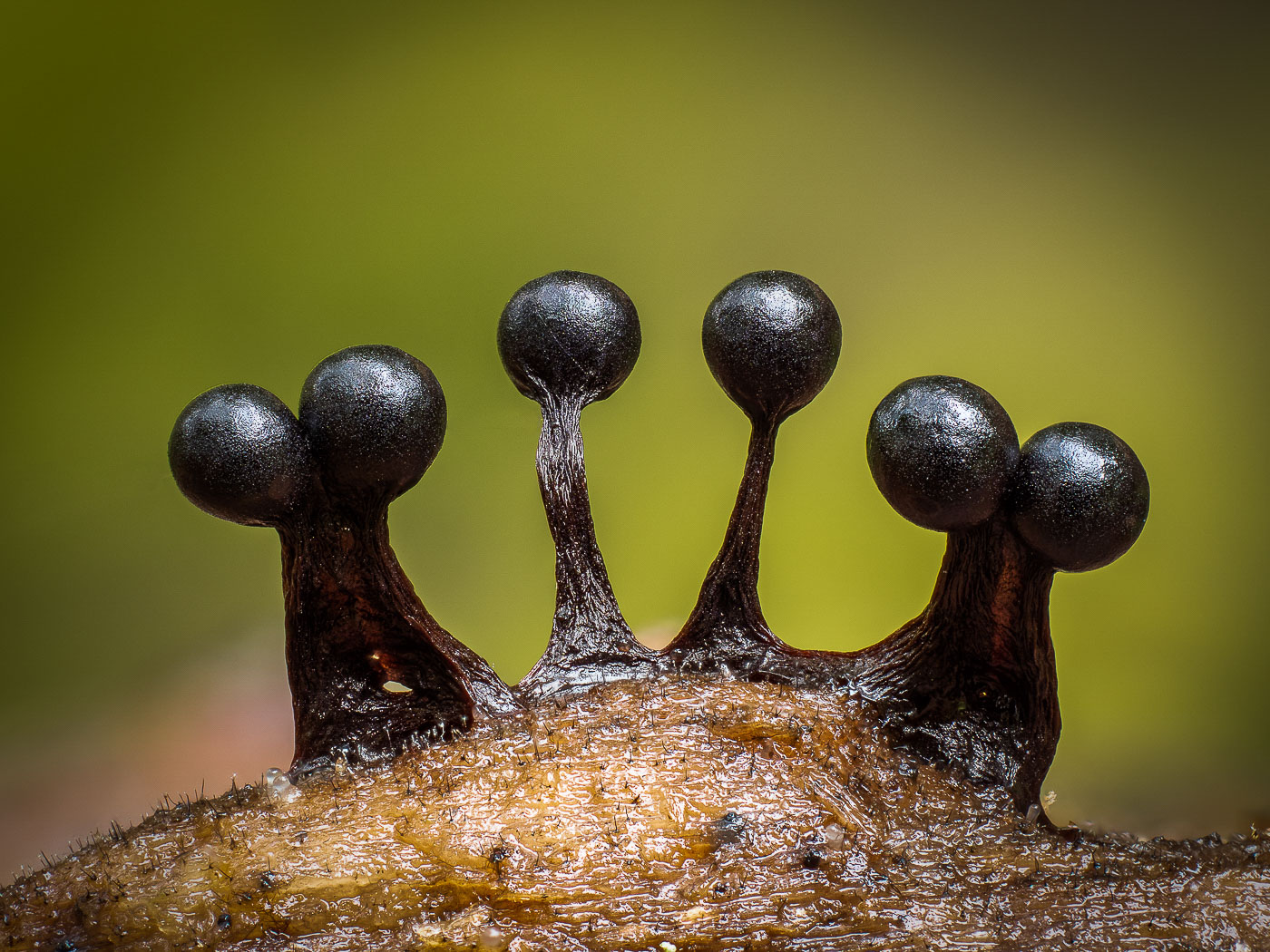 |
October 17th Metatrichia floriformis (a Slime Mould with no common name)
Barry Webb took this delightful photo in Penn Wood, part of a colony of this tiny very common slime mould which grows on rotting damp fallen wood. The plasmodium (early slimy stage) of this particular species is dark red to black, then it gradually 'mutates', developing into these black blobs on stalks less than 4 mm high which then split open forming a flower-like shape (hence its species name) and from which the spore mass disperses. See a beautiful example of this later stage included in Barry Webb's photos which follow below our list of dated photos.
|
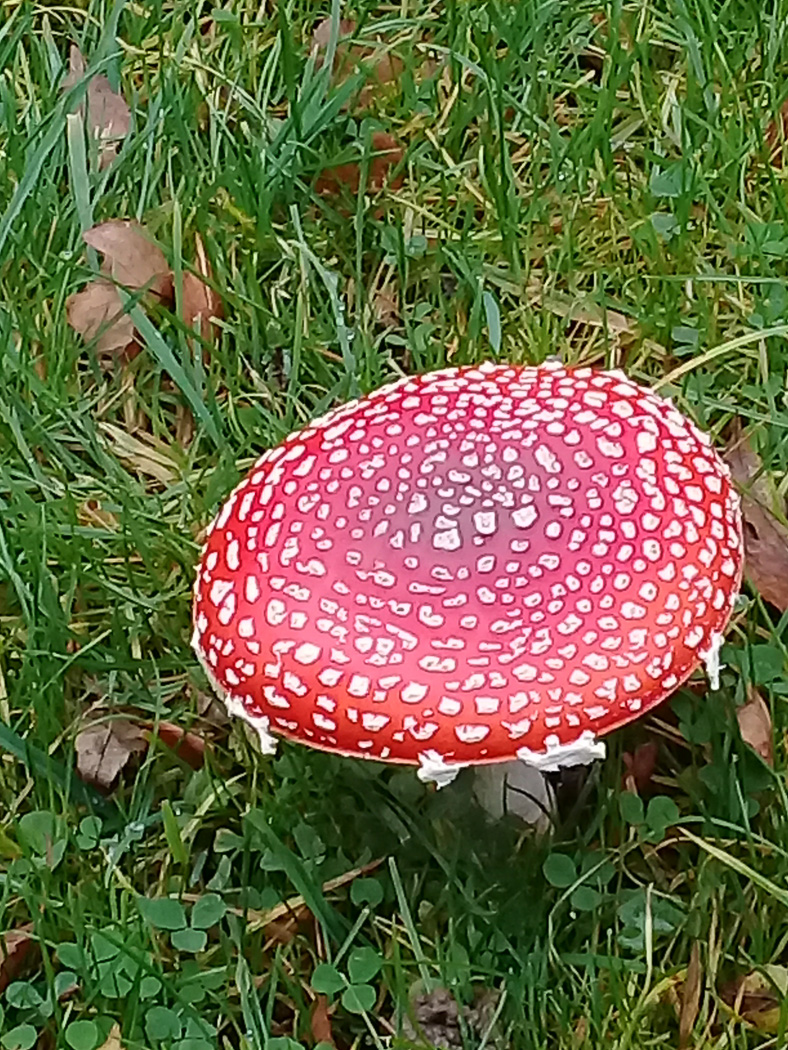 |
October 17th Amanita muscaria (Fly Agaric)
We have a previous photo of this species - very common this year - dated Sept 12, but Greg Douglas found this fruit body with a perfectly marked cap on a lawn under Birch in Chesham which we thought was worth including. It shows that this eye-catching species is still about though many Amanitas are now over and becoming hard to find.
|
October 16th 2020
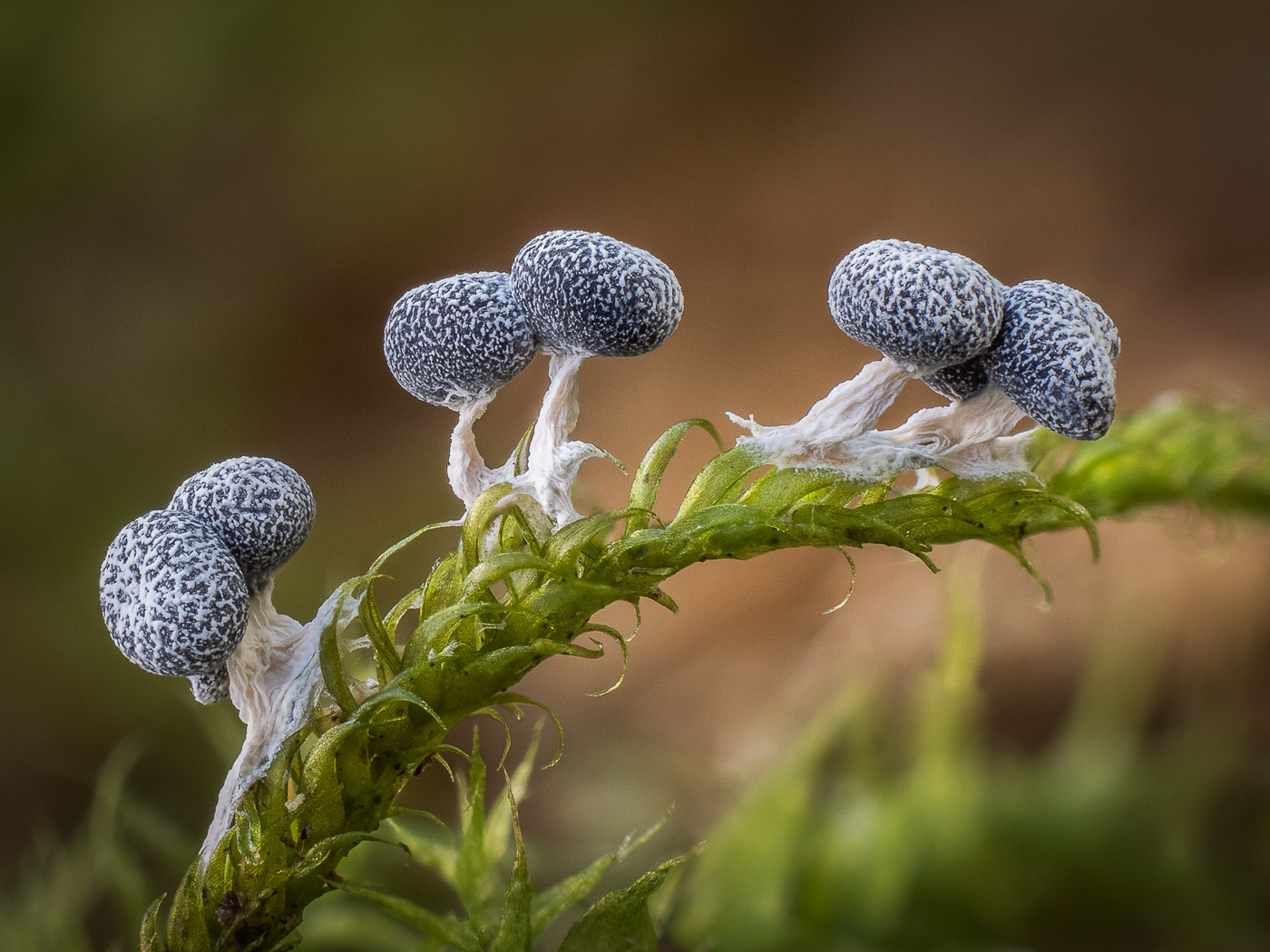 |
October 16th Physarum leucopus (a Slime Mould with no common name)
Barry Webb found this uncommon slime mould growing in moss on a Beech log in Burnham Beeches. Clearly very similar to P. leucophaeum, also found today (see notes for that species), it inhabits woodland debris rather than wood itself and has a distinctive white stalk, hence its species name. This is new not only to the site but also to the county.
|
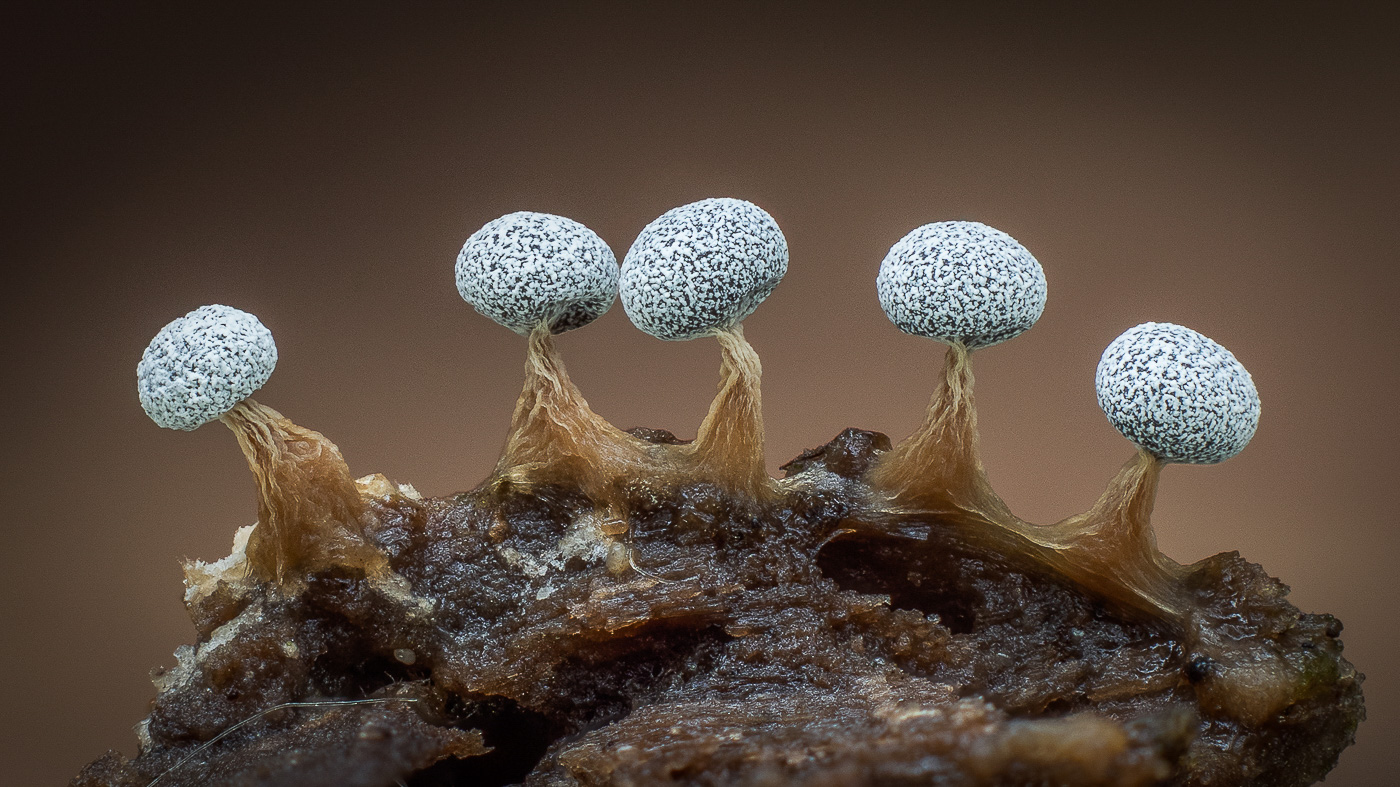 |
October 16th Physarum leucophaeum (a Slime Mould with no common name)
Barry Webb found these tiny gems on rotting fallen Beech in Burnham Beeches. No more than 1.5 mm high, this species is a member of a very large genus which has a protective coating of calcareous crystals or granules covering the sporangium (fruiting head), giving the appearance of being dusted with icing sugar! We have just two county records of this species, reflecting the rarity of expertise amongst recorders rather than of what is apparently a common species! (See also P. leucopus found the same day.)
|
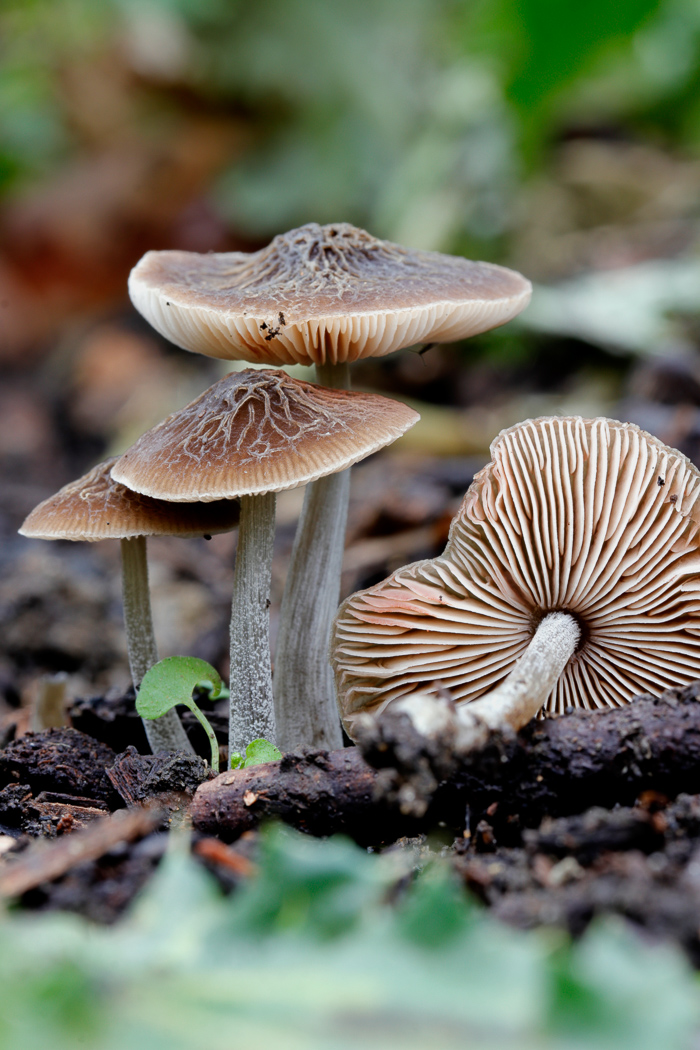
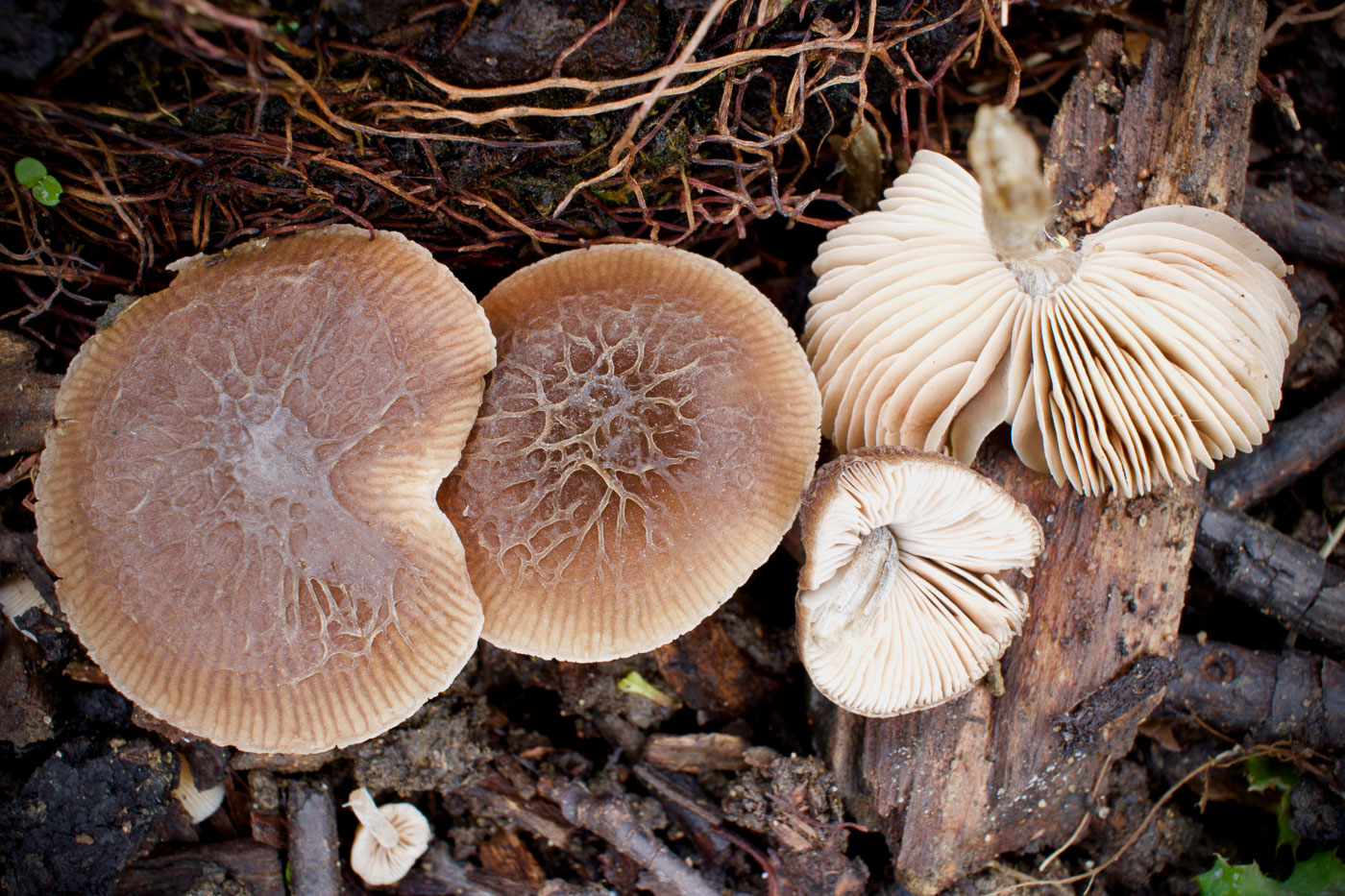 |
October 16th Pluteus thomsonii (Veined Shield)
Justin Long found this unusual species in a woodchip pile in Milton Keynes. This is a small species of Pluteus with caps no bigger than 3 cm across at most and usually smaller, but is unmistakable in the field due to its very distinct raised 'veins' on the cap surface. Note also the pale pink gills which are free of the stem - both features typical of the genus.
|
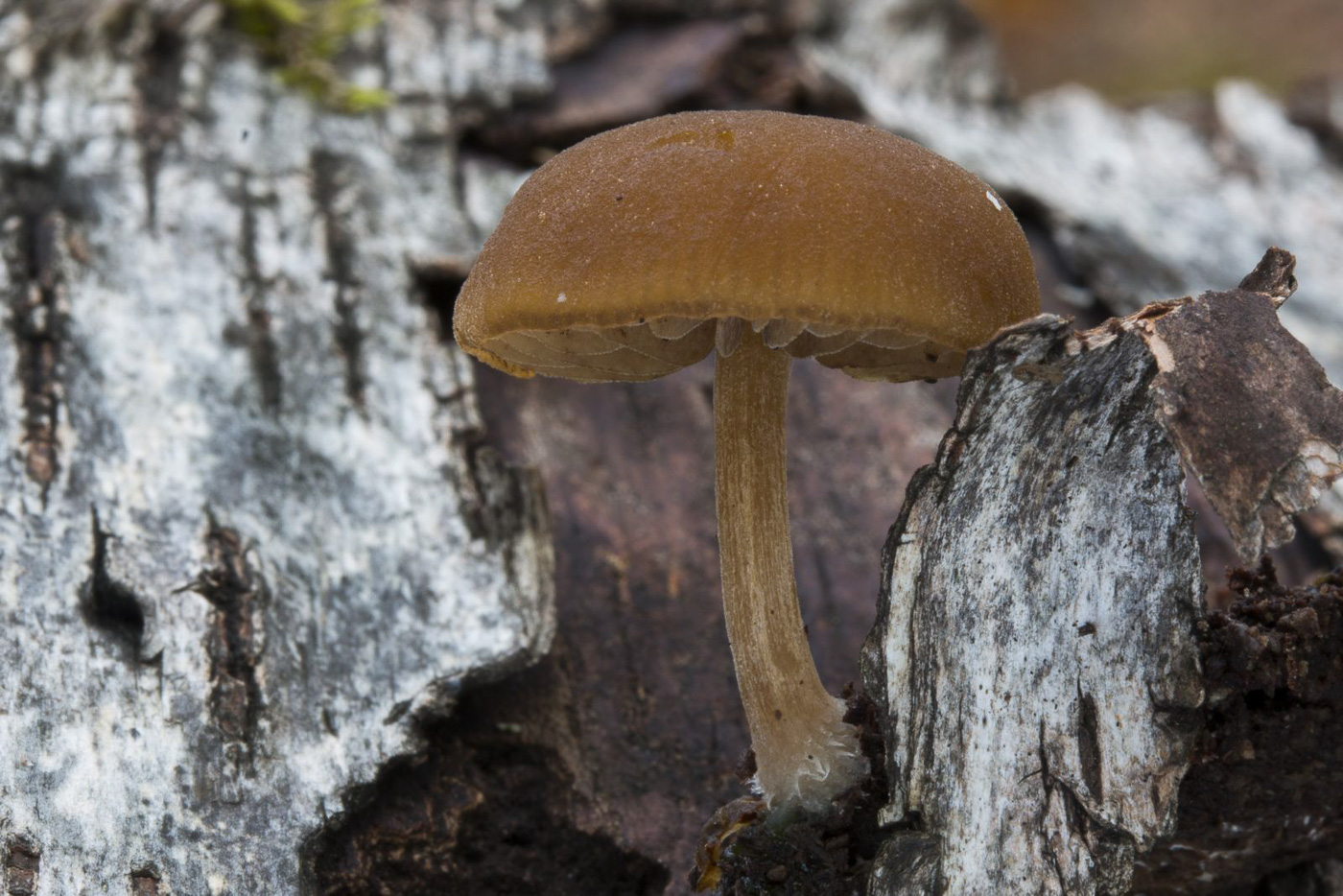
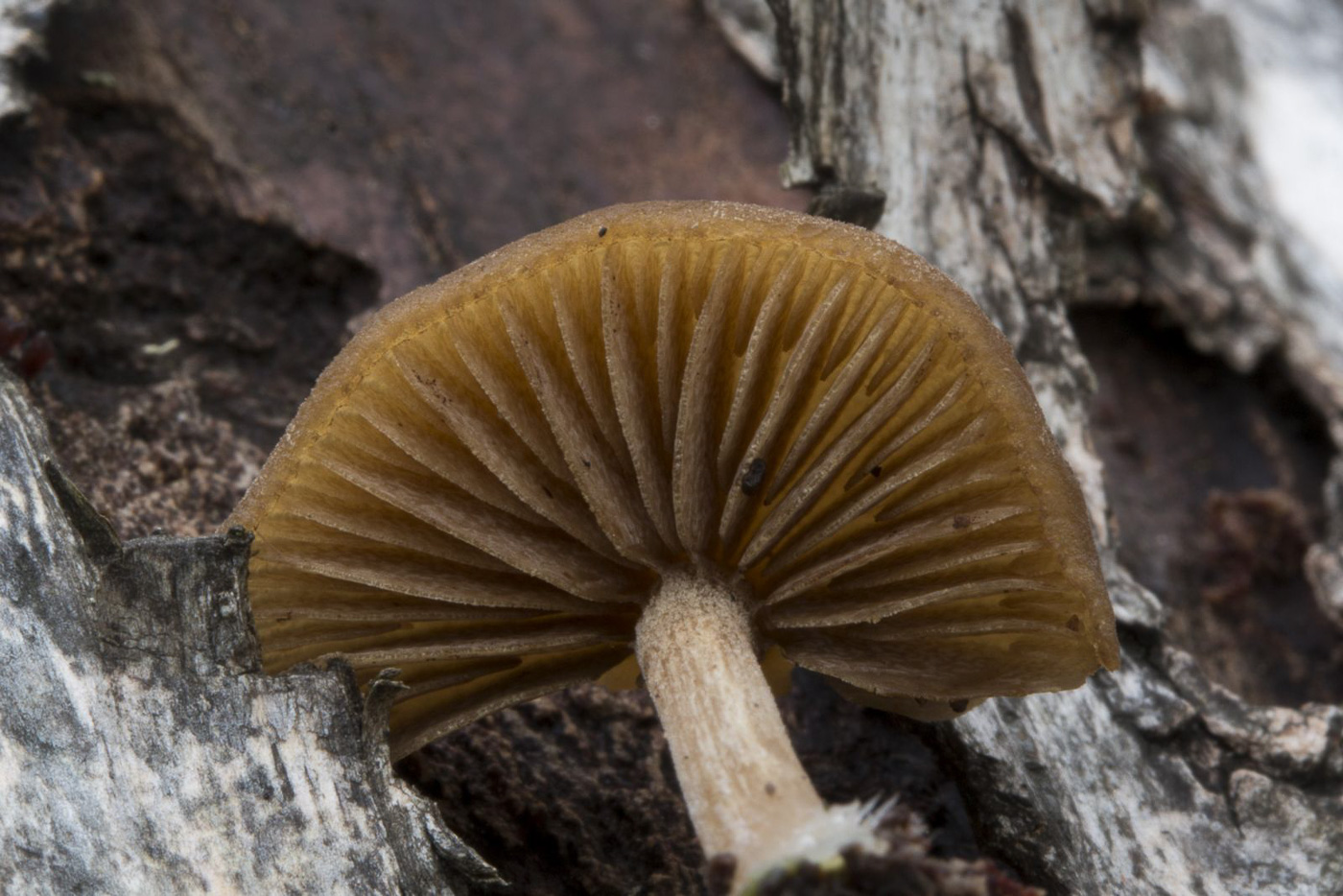 |
October 16th Simocybe sumptuosa (Velvet Twiglet) 
Claudi Soler found this small singleton on rotting deciduous wood in Burnham Beeches. Superficially from above it looks similar to a small Pluteus but once you turn it over and notice that the gills are not free of the stem at the top, nor are they crowded or pink, you know you have something quite different, maybe a species of Psathyrella? A scope soon eliminates that genus too, so the inexperienced would now be struggling for the genus! Luckily, Claudi knew it might well be a Simocybe so checked the microscopic features to confirm which of the two likely species he had. It is an occasional species thought easily overlooked and caps can be up to 4 cm across but are usually smaller as was the case here.
|
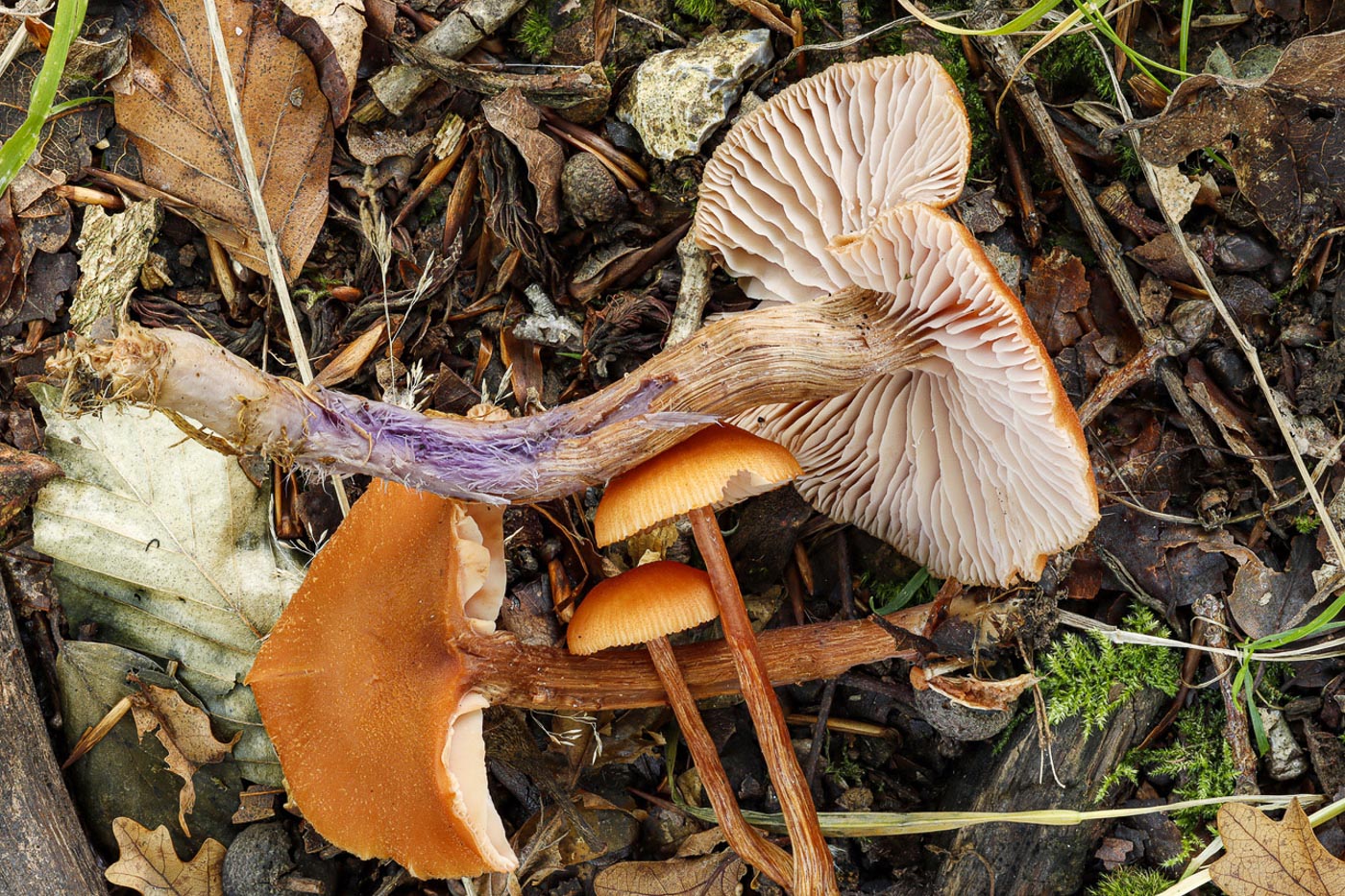
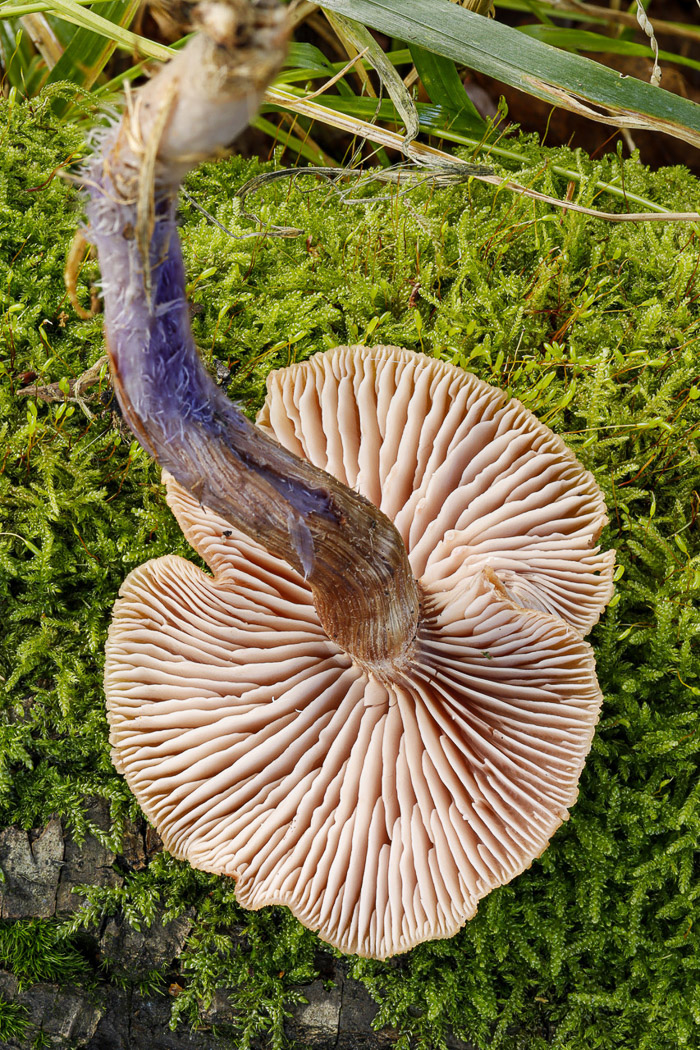 |
October 16th Laccaria bicolor (Bicolored Deceiver)
Paul Goby found this quite rare species growing in litter in disturbed soil in Naphill Common. Very similar to the common Deceiver, this species sports the amethyst to mauve colours found in the Amethyst Deceiver but only at the stem base and apparently in the stem flesh (seen very clearly here). We have just one previous county record from Burnham Beeches, so this is new to the site and a nice find.
|
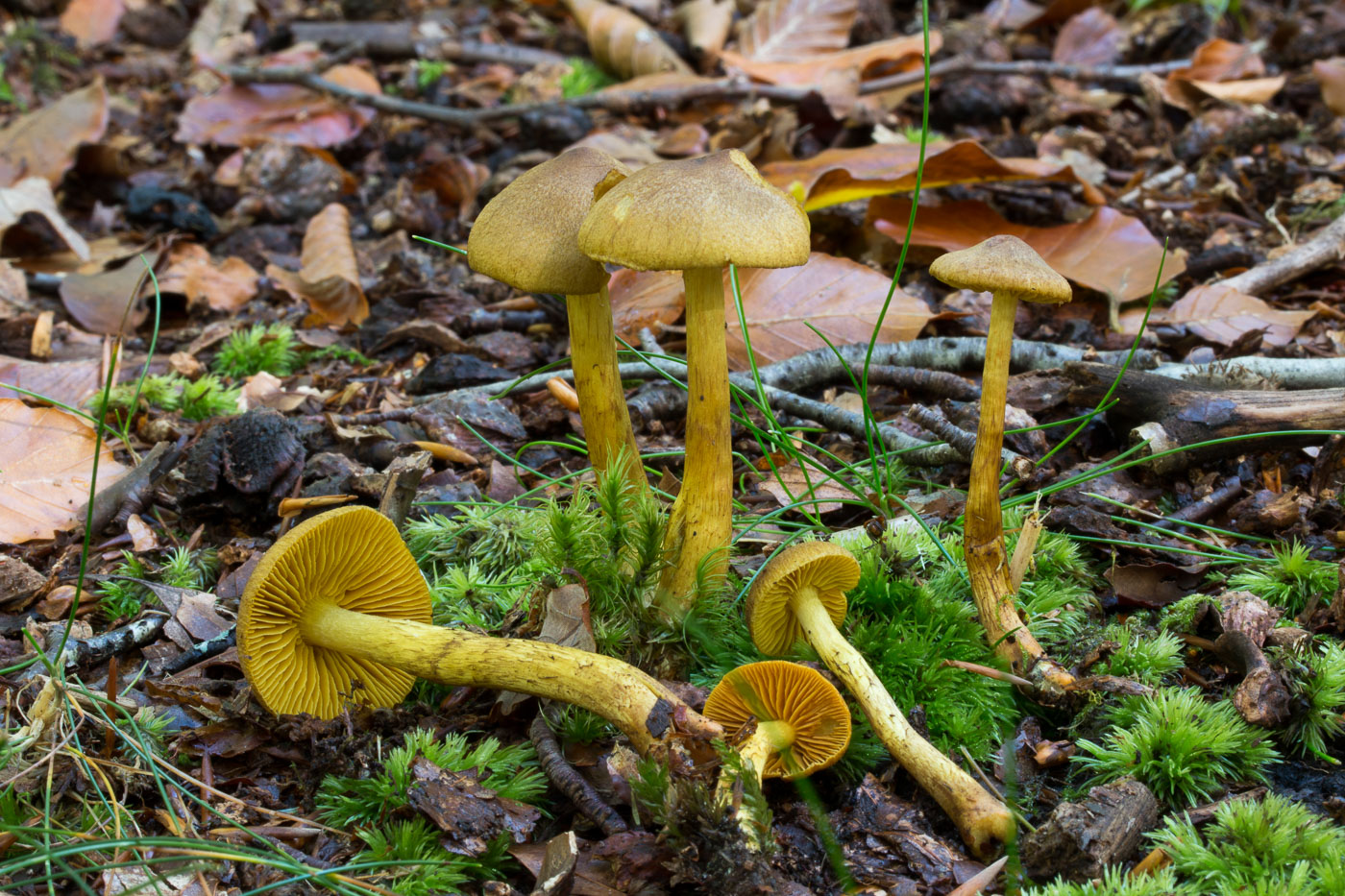 |
October 16th Cortinarius croceus (Saffron Webcap) 
Alison Peace found this beautiful and quite unusual Webcap in mossy Beech litter in Burnham Beeches (photo Claudi Soler). This is a member of the Dermocybe group of Webcaps which have dry silky caps, and is recognised by its amazing yellow gills and stem. However, there is another almost identical species, found new to Britain from this same spot two years ago, and only separable from C. croceus in the field with a chemical test. See also C. huronensis var olivaceus found again here, dated Oct 19!
|
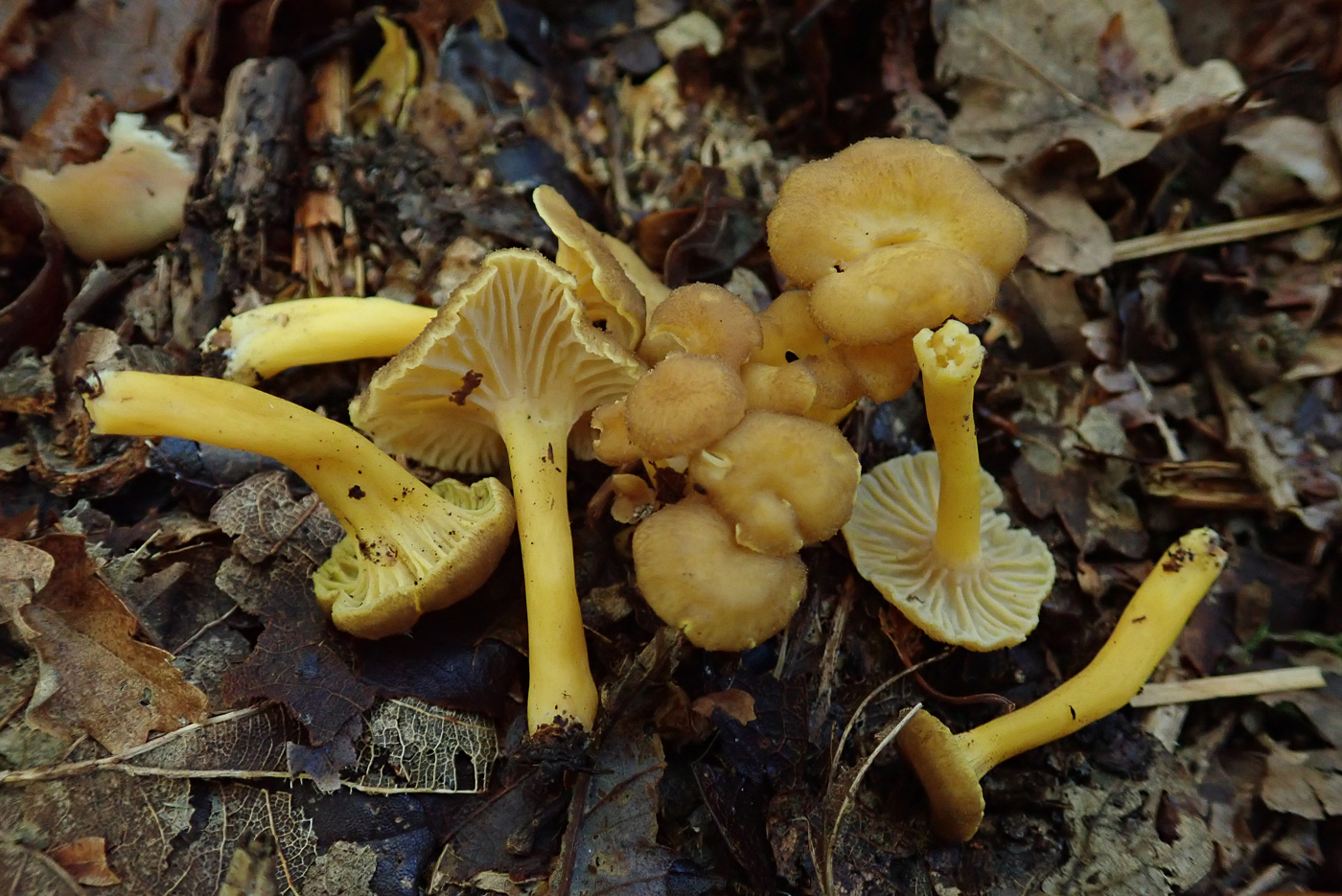
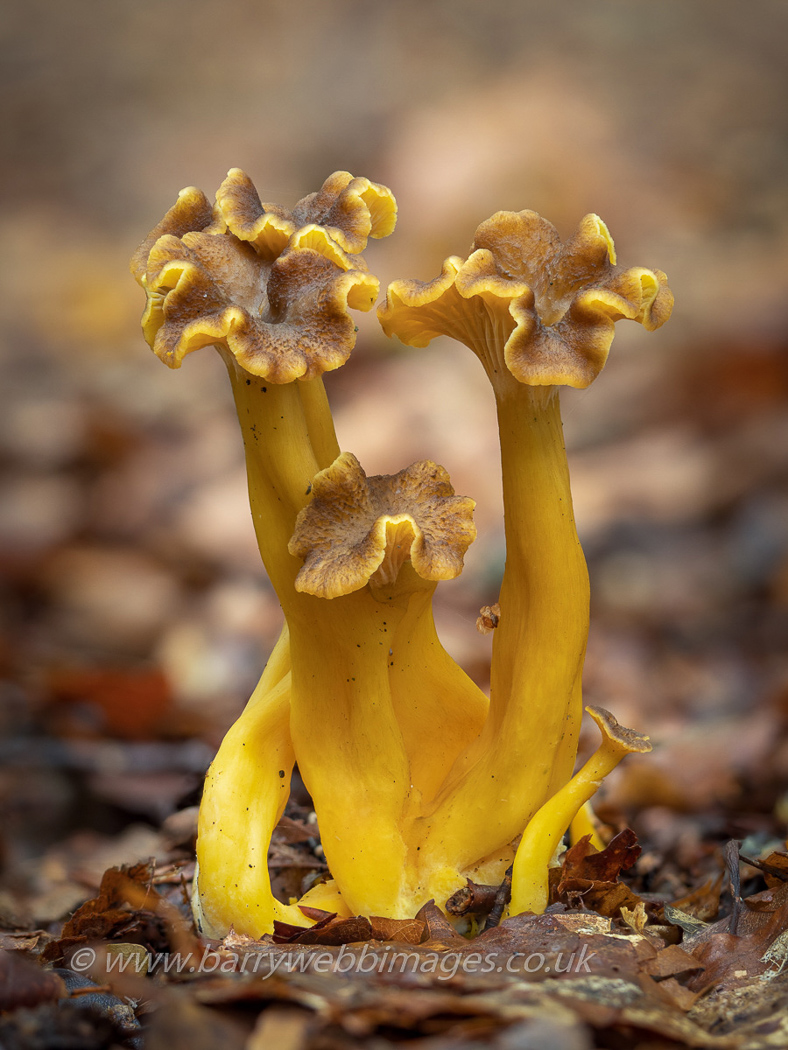 |
October 16th Cantharellus tubaeformis (Yellowlegs / Trumpet Chanterelle)
Alison Peace found this collection growing amongst bracken and litter under mixed deciduous trees in Burnham Beeches (photo Penny C.). Our first Chanterelle, this species is considered a late season fruiter (another name for it is Winter Chanterelle) and is much flimsier and thinner fleshed that a true Chanterelle. The yellow stem is hollow and the gills are typical of the genus being more like shallow folds and often seem to fork near the edge of the cap. Photo 2 was taken by Barry Webb at Burnham Beeches just four days earlier.
|
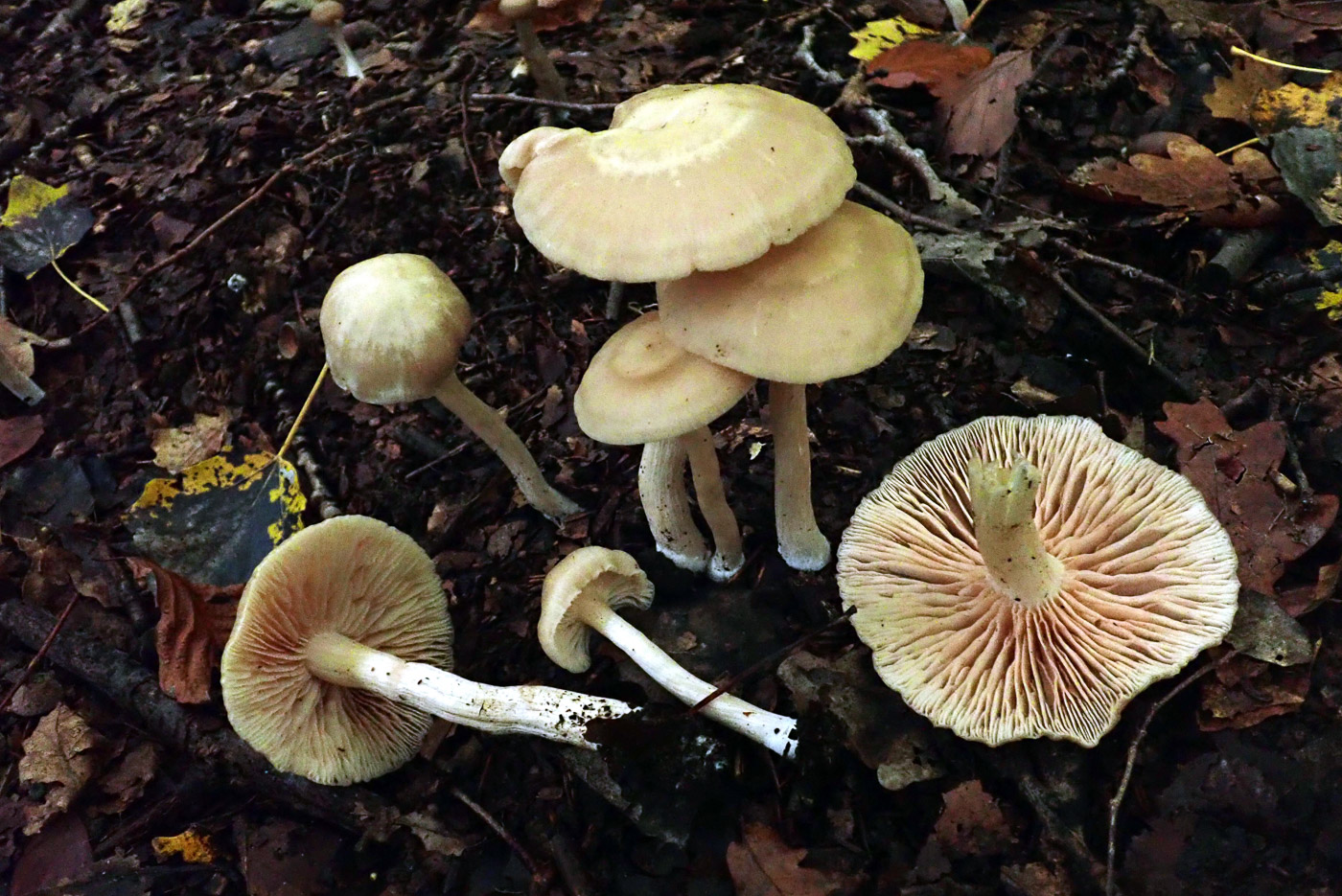 |
October 16th Entoloma rhodopolium (Wood Pinkgill) 
Paul Cullington noticed a good number of this large Pinkgill fruiting in damp soil in Burnham Beeches (photo Penny C.). This species is relatively common and can get to a good size, caps here were 7 cms across and stems somewhat more than that high. This is a genus easy to recognise in the field because of its pink gills and sporeprint, but that's as far as the easy bit goes! This collection, because of its size and the habitat, was likely to be this species but still had to be checked with a scope to confirm.
|
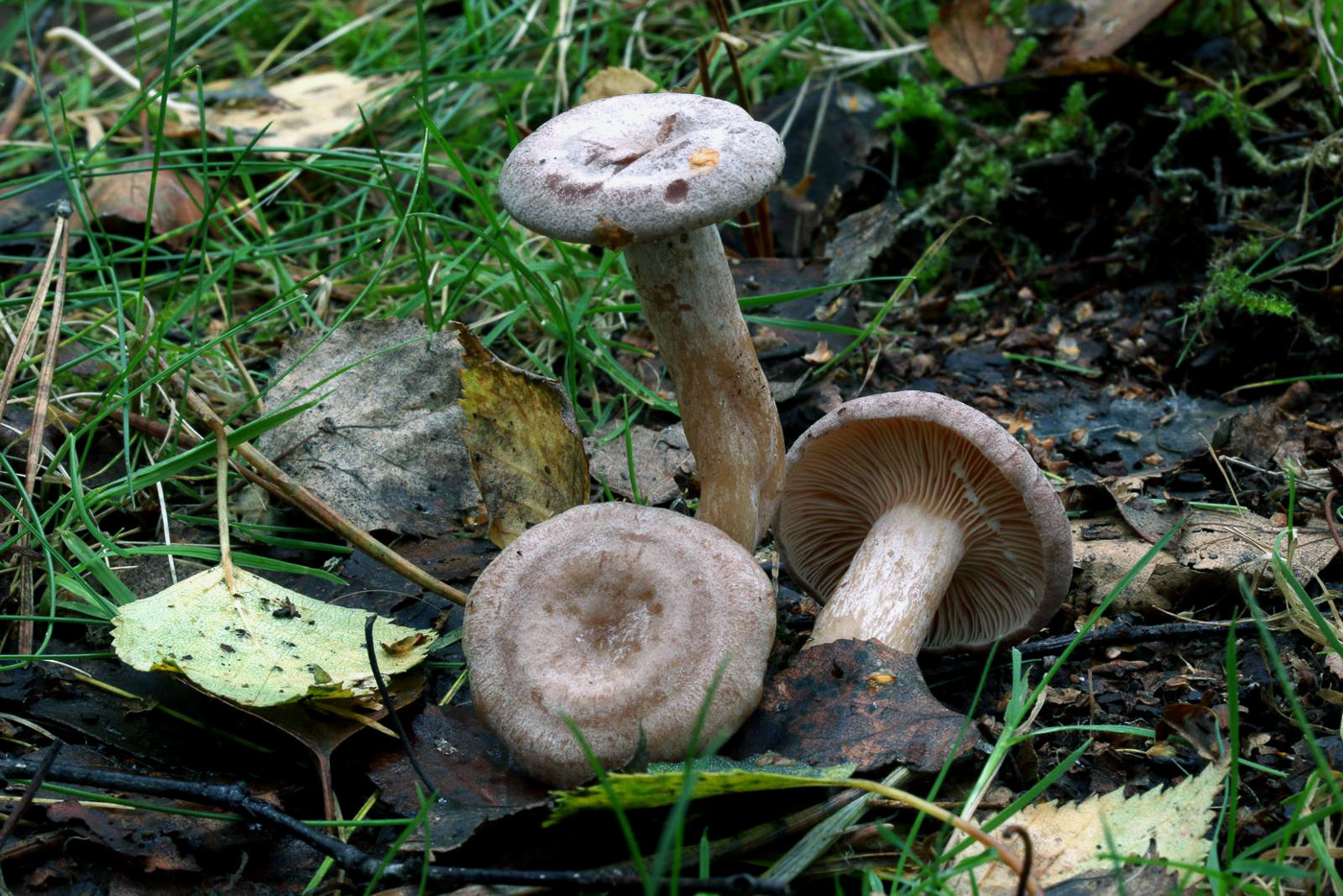 |
October 16th Lactarius glyciosmus (Coconut Milkcap)
Penny C. found this collection under Birch, its host tree, in Burnham Beeches, (photo Claudi Soler). In appearance it is much like many other small to medium sized Milkcaps but if you find one under Birch, it's worth smelling it because the clear sweet dessicated coconut smell is the best way to confirm its identity in the field.
|
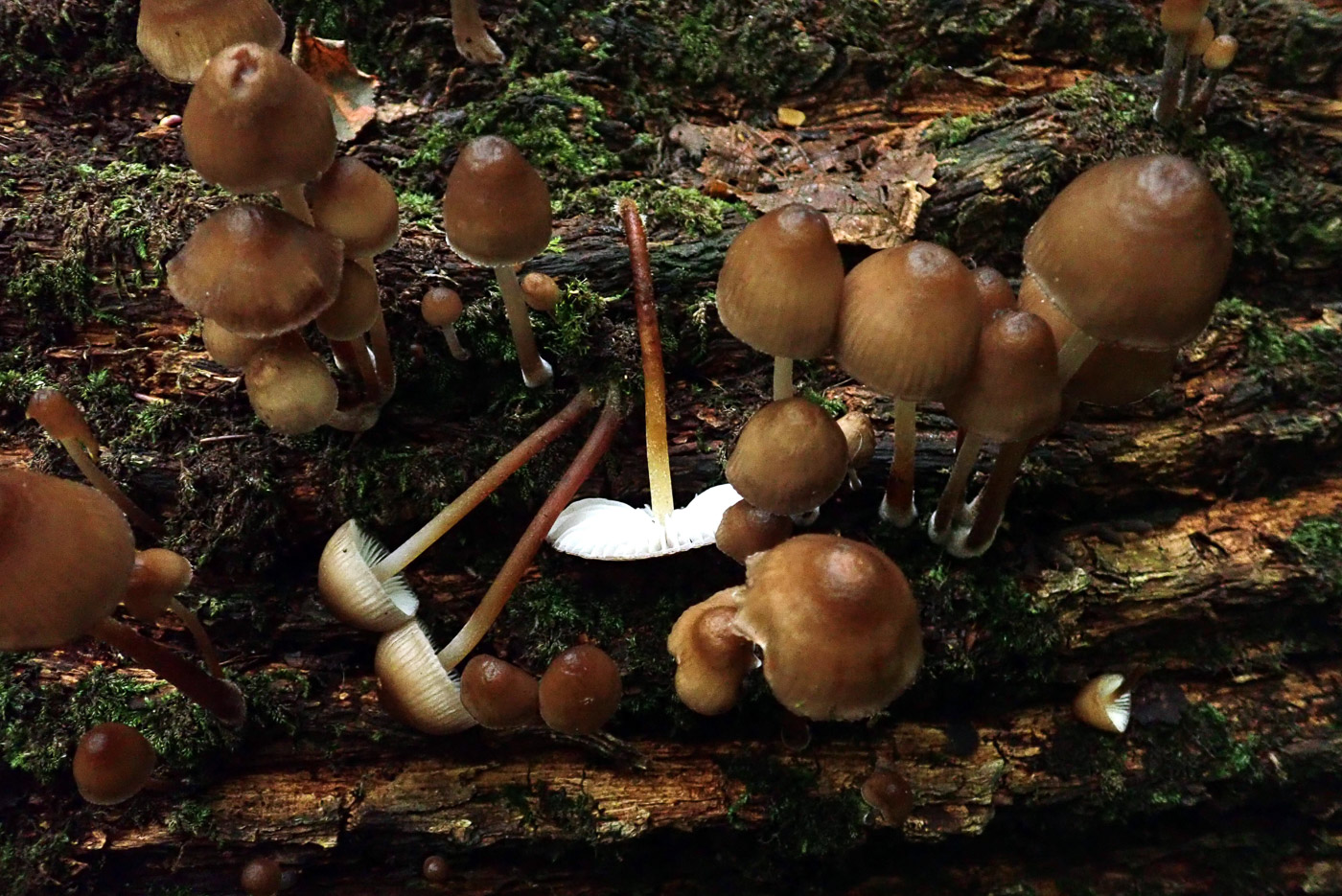
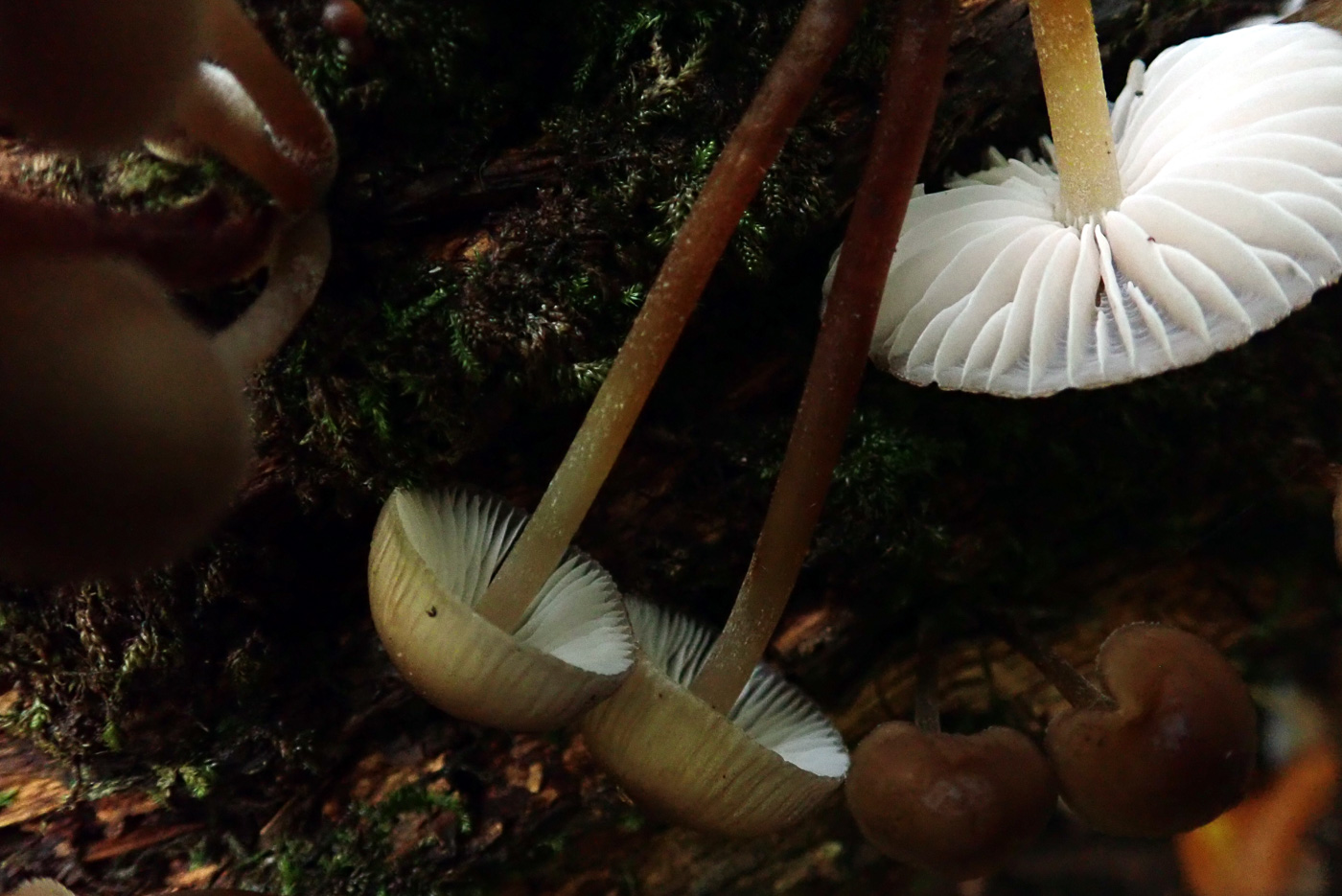 |
October 16th Mycena inclinata (Clustered Bonnet)
Penny C. found this cluster on a rotting Oak trunk in Burnham Beeches. It is quite common and one of the larger species of the many wood inhabiting Bonnets and with experience is recognisable in the field. Features which distinguish it are the clustered habit (also found on Oak), the brownish caps with outer half striate (not markedly so in today's collection), the stems which typically are white at the top but become gradually darker through orange to reddish at the base, and the very distinctive strong smell described as spicy-rancid but for Penny of lupins!
|
 |
October 16th Hebeloma mesophaeum (Veiled Poisonpie) 
Penny C. found this striking collection under Birch in Burnham Beeches. This is one of the commoner species of Poisonpie and when it has this very distinctive two-tone coloured cap it is easy to recognise, though it is often not as clear as in today's collection. With this genus one should always check for the radish smell which most species have and also use a scope to determine the species. It is considered one of the harder genera to identify and very few can safely be named in the field.
|
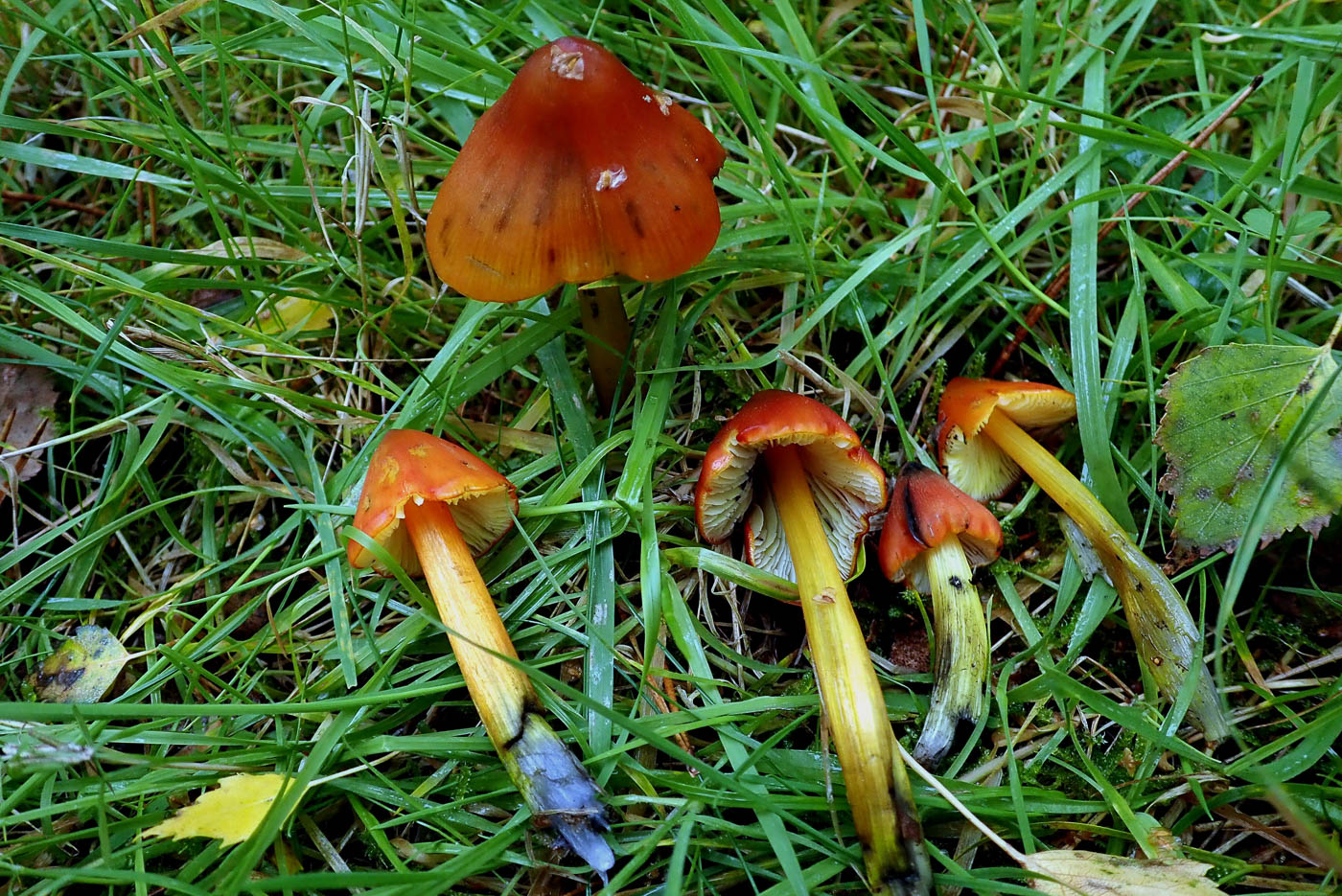 |
October 16th Hygrocybe conica (Blackening Waxcap)
Paul Cullington found this collection in longish grass at Burnham Beeches (photo Penny C.). We have this species already (dated Sept 09) but today's collection shows the typical conical shape and colours of the species with the blackening just beginning on the damaged stems. It's worth noting that the gills, white here, can be yellow or even red in some collections.
|
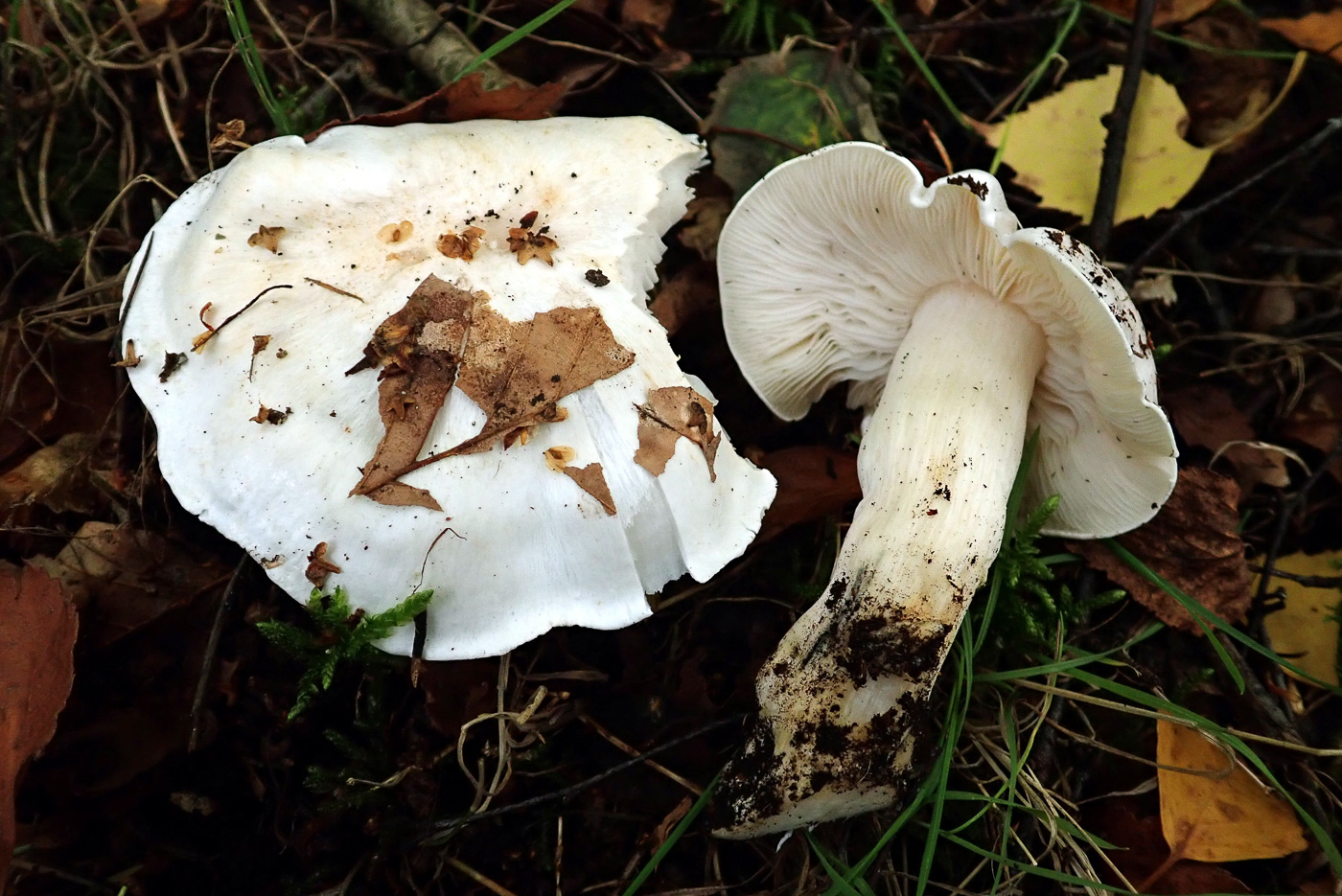 |
October 16th Tricholoma columbetta (Blue Spot Knight)
Penny C. found this species under Birch at Burnham Beeches - yet another of the white capped Knights but this one lacks the unpleasant pervasive chemical smell of the trio previously discussed under T. album (dated Sept 26) and T. stiparophyllum (dated Oct 13). We have very few county records of today's species though this may be due to our lack of experience over its recognition: the bright white shiny silky rounded cap combined with the lack of a distinctive smell is the key feature, though in maturity it can develop blue green spots at the stem base (not always present, however). It occurs under various deciduous trees.
|
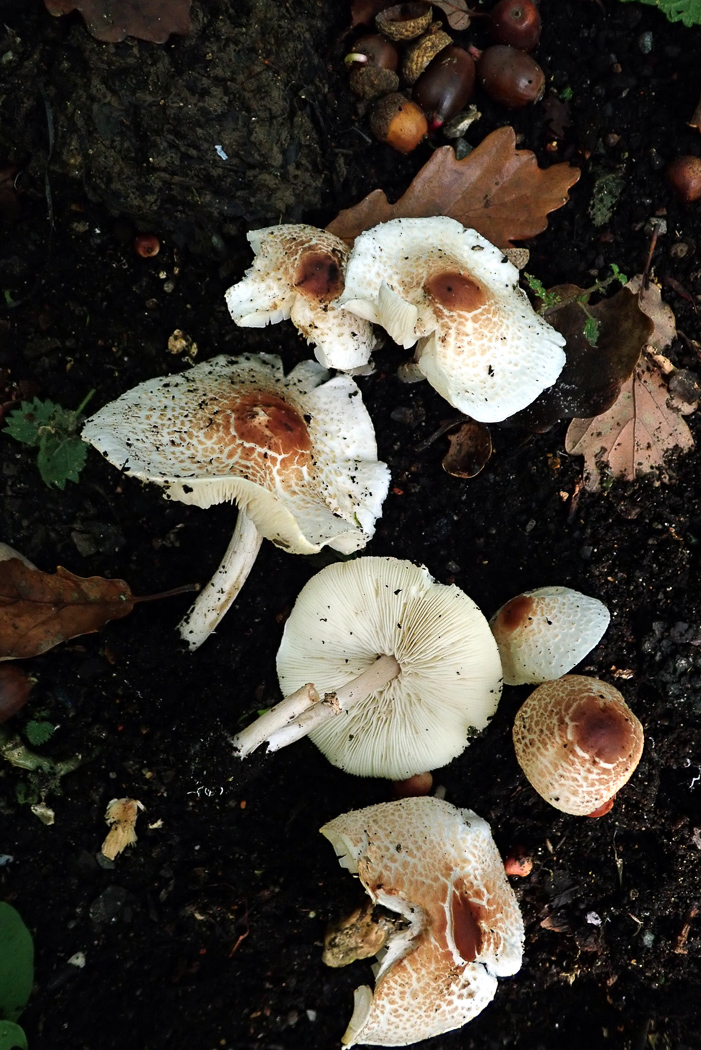 |
October 16th Lepiota cristata (Stinking Dapperling)
Alison Peace found a nice collection of this common - yet scarce so far this season - Lepiota on a large rotting woodchip heap in Burnham Beeches (photo Penny C.) This particular heap has produced many interesting species over the years but today this was the sole representative. The caps were a good size, up to 4 cms across, and displayed the typical bright chestnut central area fading rapidly to white at the margin with some dotted scales in between. Gills are very crowded and free of the top of the stem, which has a ring when young but tends to lose it as it matures. Once familiar with its strong unpleasant rubbery smell it makes separation from other similar Lepiota species easier.
|
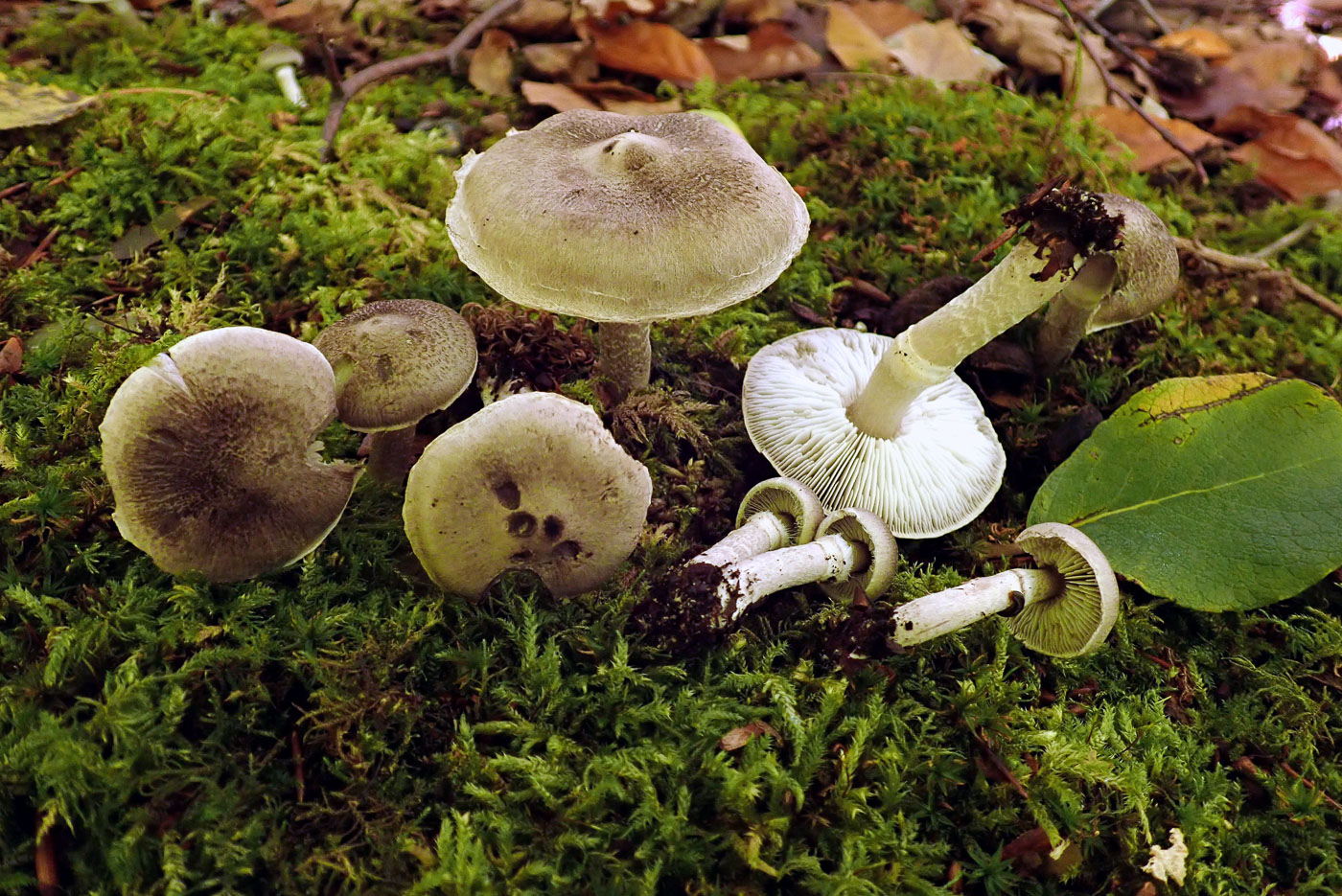
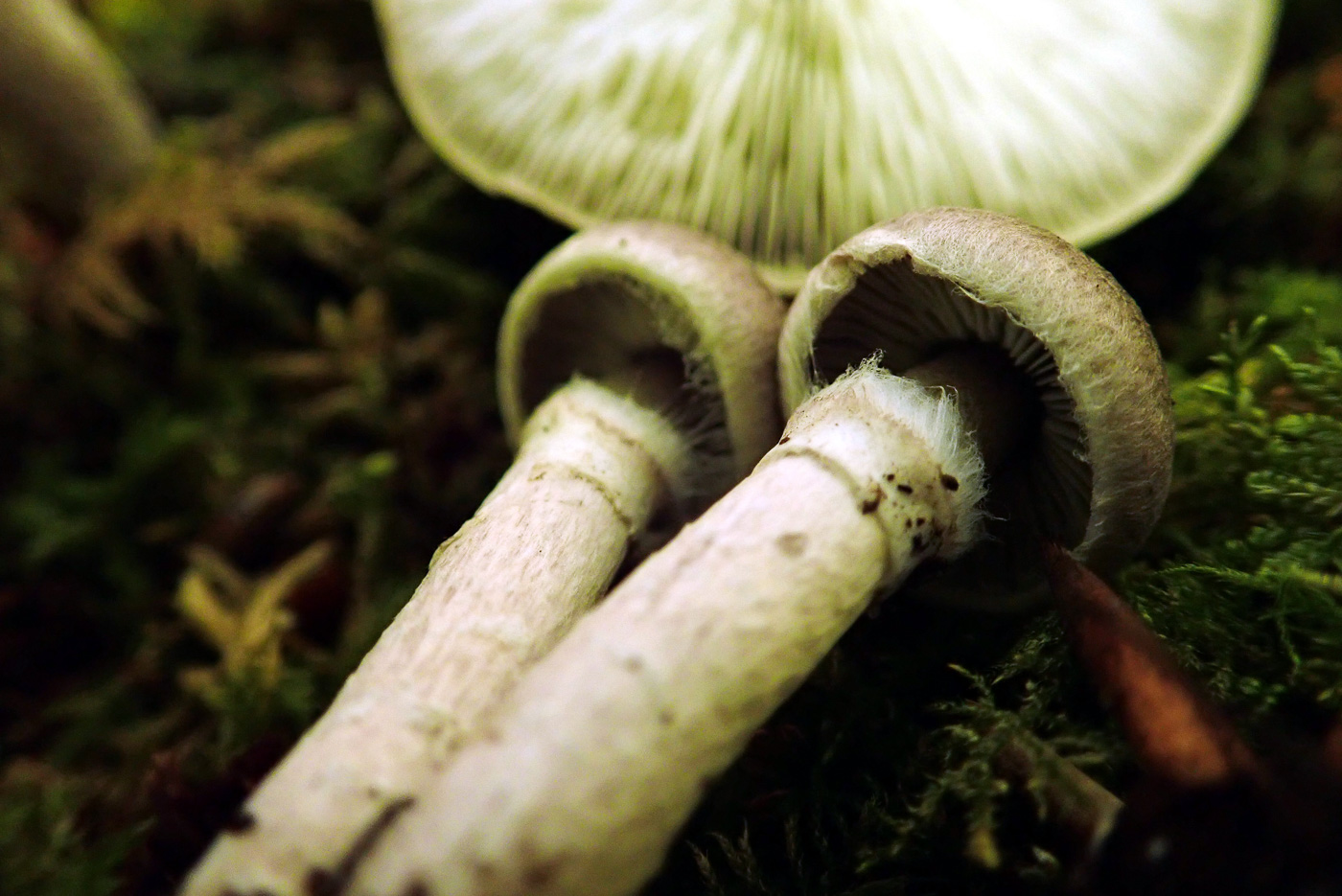 |
October 16th Tricholoma cingulatum (Girdled Knight)
Paul Cullington found good numbers of this species of Knight under Willow in Burnham Beeches (photo Penny C.). There are quite a few Knights having similar brownish grey caps but this particular species is unique amongst them because it has a ring on the stem - the only member of the genus to do so. So if you find a greyish Tricholoma under Willow (its only host) check for a ring. If it has one, job done!
|
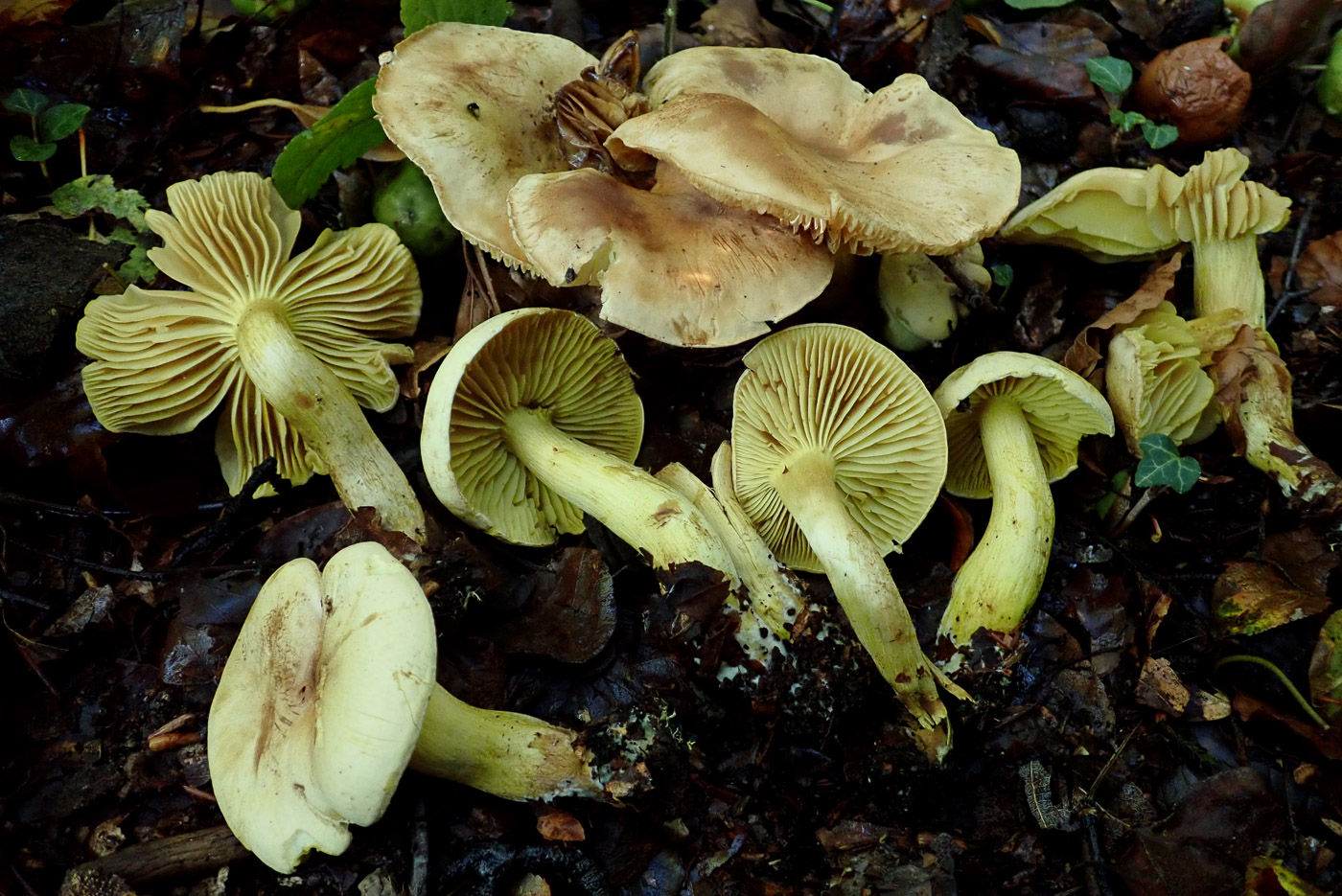 |
October 16th Tricholoma sulphureum (Sulphur Knight)
Alison Peace found this wonderful collection under Beech in Burnham Beeches (photo Penny C.) Though caps and gills are sulphur yellow when young, caps tend to become slightly brownish with age though the gill colour is always striking, as is the pervasive smell of the species! In fact we could smell these without needing to put them near our noses! They reek of coal gas tar or for some of bad eggs - unmistakeable.
|
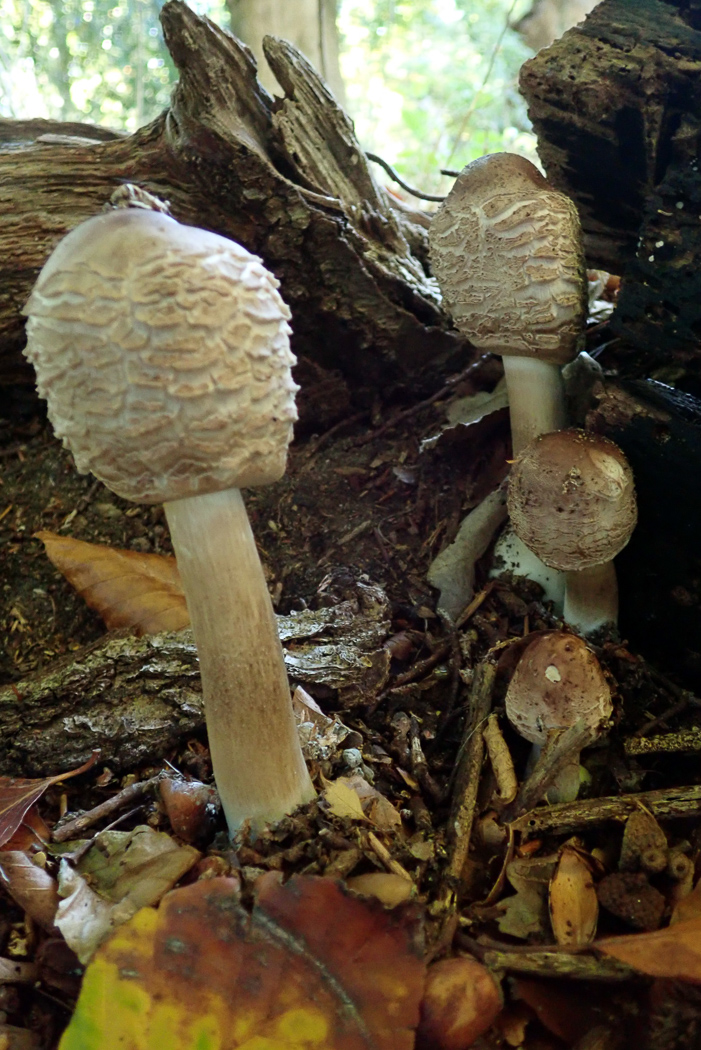
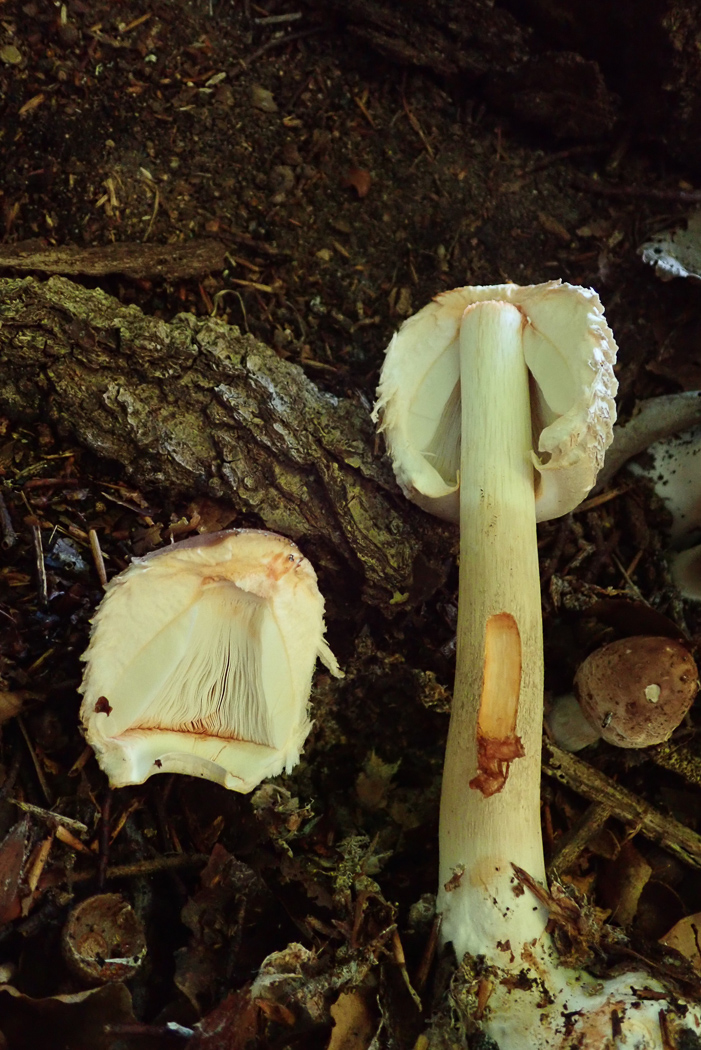 |
October 16th Chlorophyllum rhacodes (Shaggy Parasol)
Paul Cullington found this young collection in deciduous litter in Burnham Beeches (photo Penny C.) This common species is often confused with Macrolepiota procera (Parasol) unless you know what features to look for, then separating them becomes relatively easy. Scratch the stem (which is smooth and lacks the snakeskin brown markings found in the Parasol) and if fresh - as today's collection was - it will quickly (in a matter of seconds) turn orange. This colour change also happens if you break the cap flesh as can be seen here. (For an example of a more mature collection see under Oct 26th.)
|
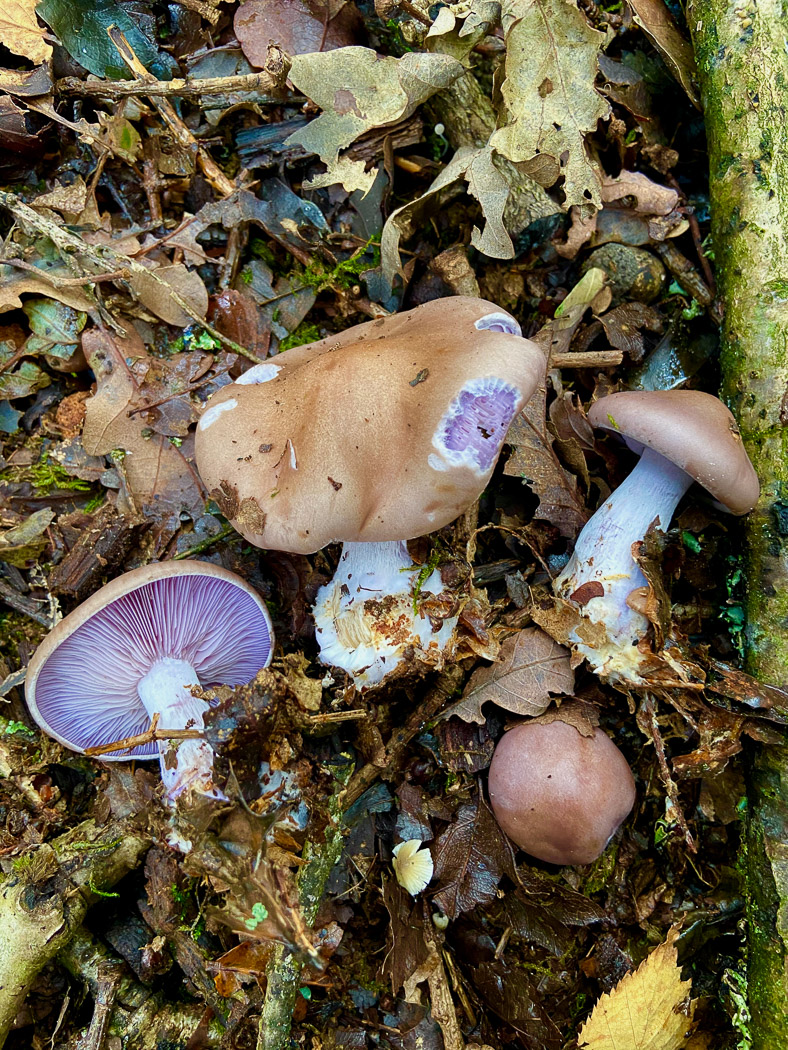 |
October 16th Lepista nuda (Wood Blewit)
Sarah Ebdon found this collection in litter in Naphill Common. An attractive species which is often considered a late season fruiter, caps are smooth and when young often show the violet colour seen here only in the gills but gradually change to soft brown. The gills also tend to lose this beautiful colour with age and stems have no ring and tend to be clavate with pale violet flesh within. Some species of Cortinarius which also have violet gills might be confused with this species but if in doubt, take a spore print. Cortinarius spores are bright rusty brown but Lepista spores are pale pinkish cream.
|
October 14th 2020
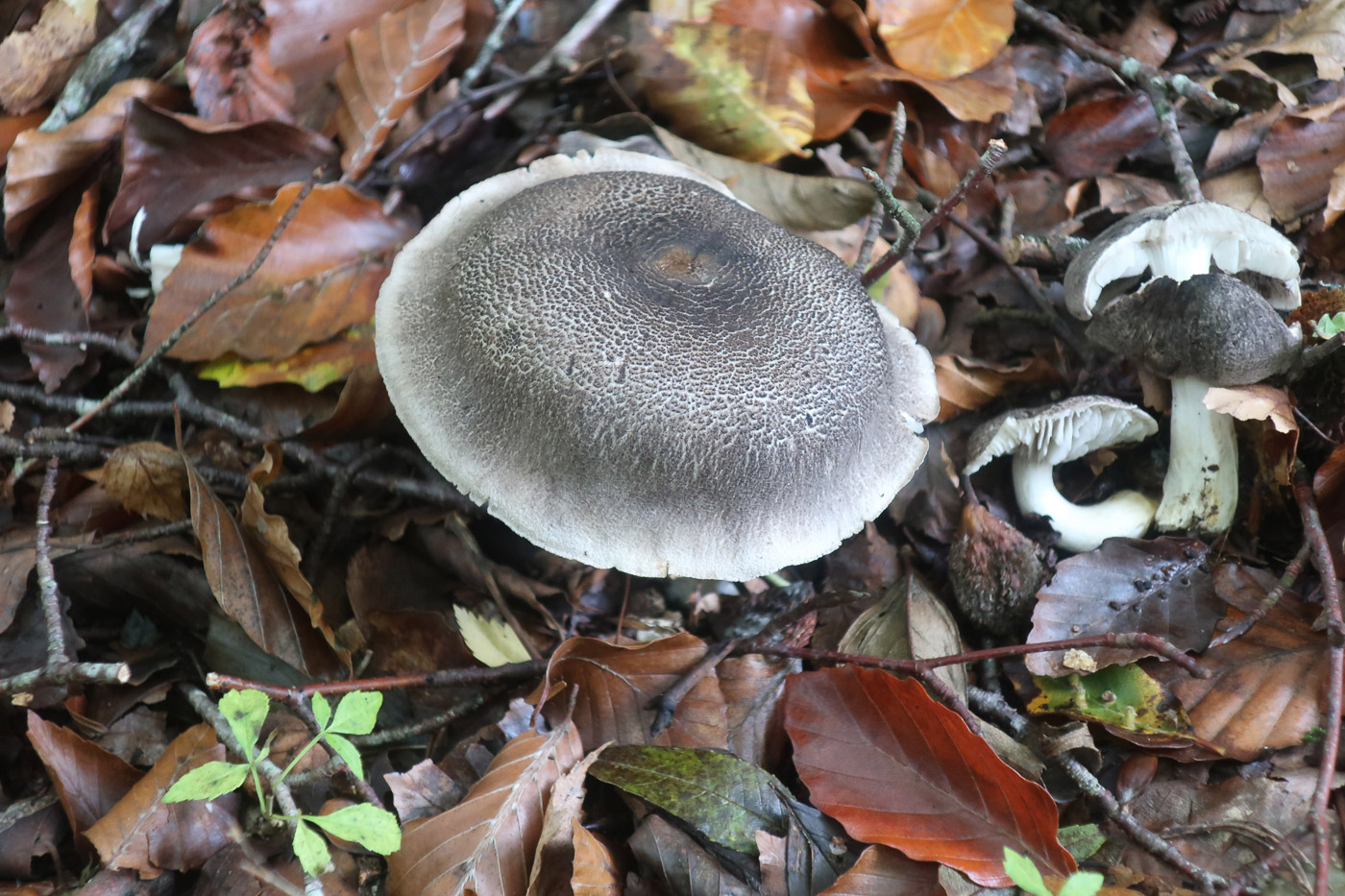 |
October 14th Tricholoma saponaceum (Soapy Knight)
Richard Fortey found this quite common Knight in Gussetts Wood under Beech. It is one of the many Knights having a grey cap but the only one having a smell of unperfumed soap. It is very variable in appearance, with basically greyish caps but with tones of green or olive, also often with a paler margin as seen here. The cap and stem surface can be either smooth or finely scaly as also seen here.
|
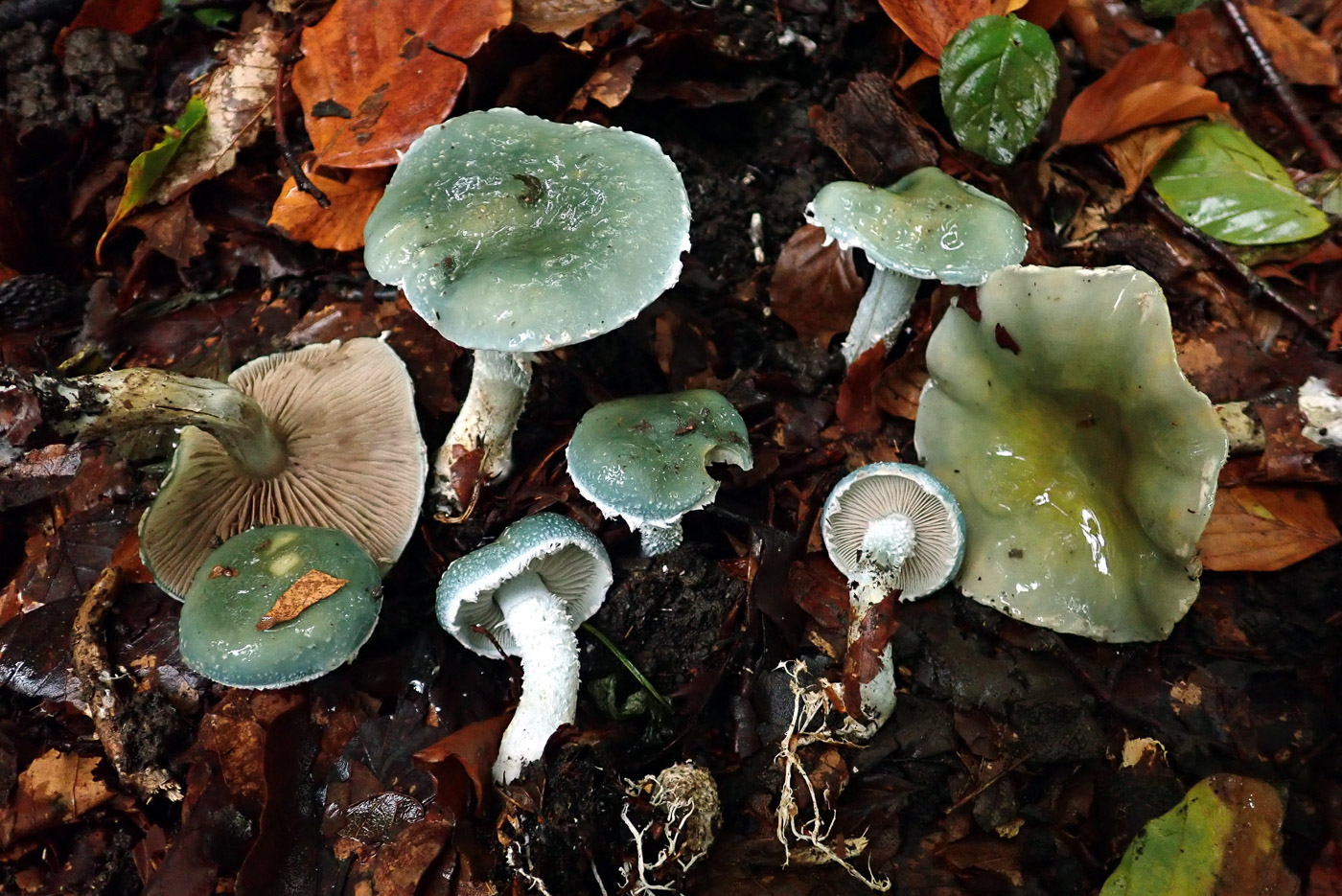
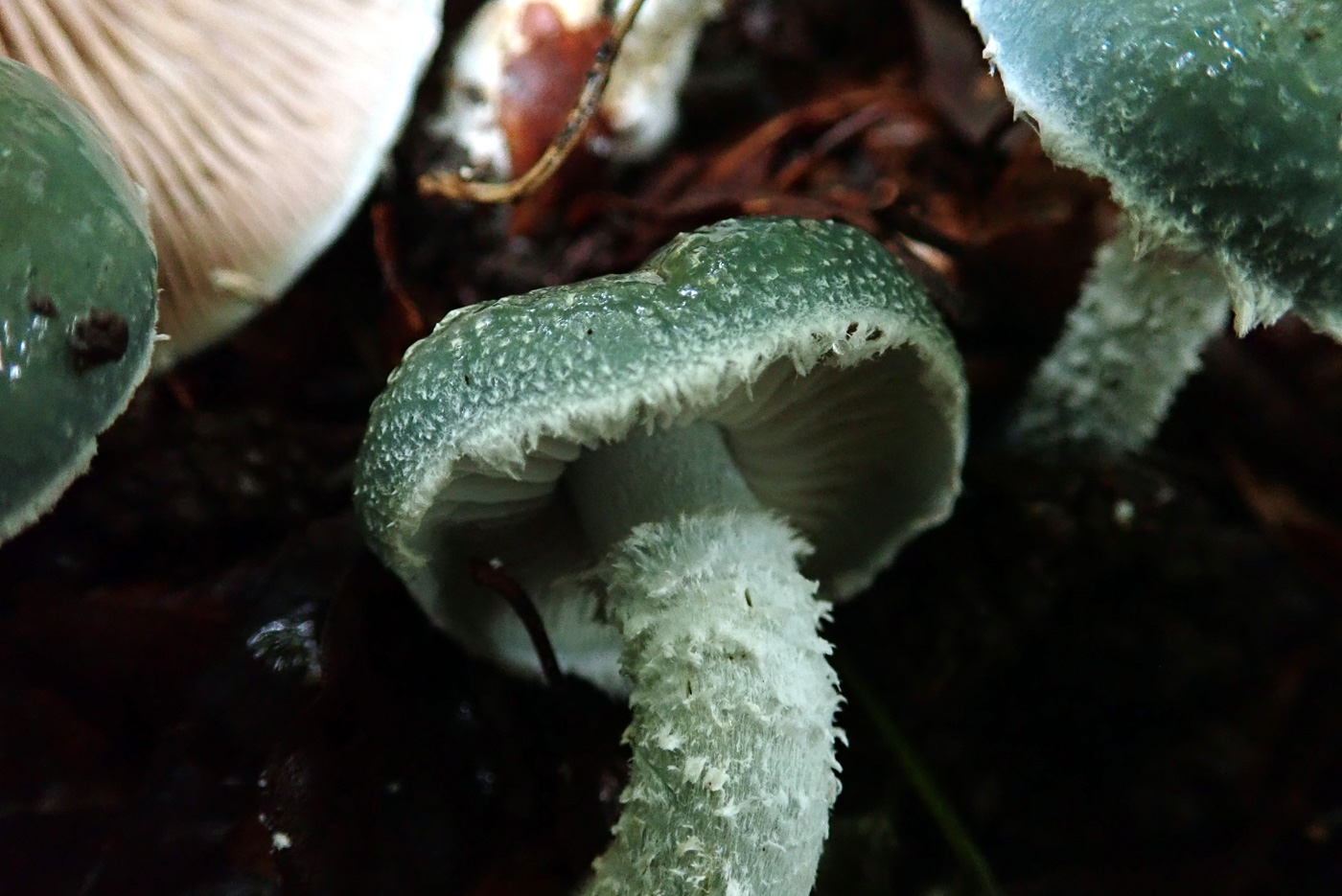 |
October 14th Stropharia caerulea (Blue Roundhead)
We do have a singleton of this species already (dated Sept 30), but this was such a stunning collection, found by Penny Cullington in Kings Wood, that it deserves an entry of its own. Found in both grassy habitats and woodland litter, when in pristine condition as here it is one of the most eye-catching and attractive mushrooms. The largest cap, just beginning to fade, was about 4 cms across. The gills, at first pale beige, end up considerably darker as in the left hand upturned fruitbody, and the coarse white fluffy edge is often soon lost in rain. The stem is also white fluffy below the ring zone but smooth above this (seen in photo 2).
|
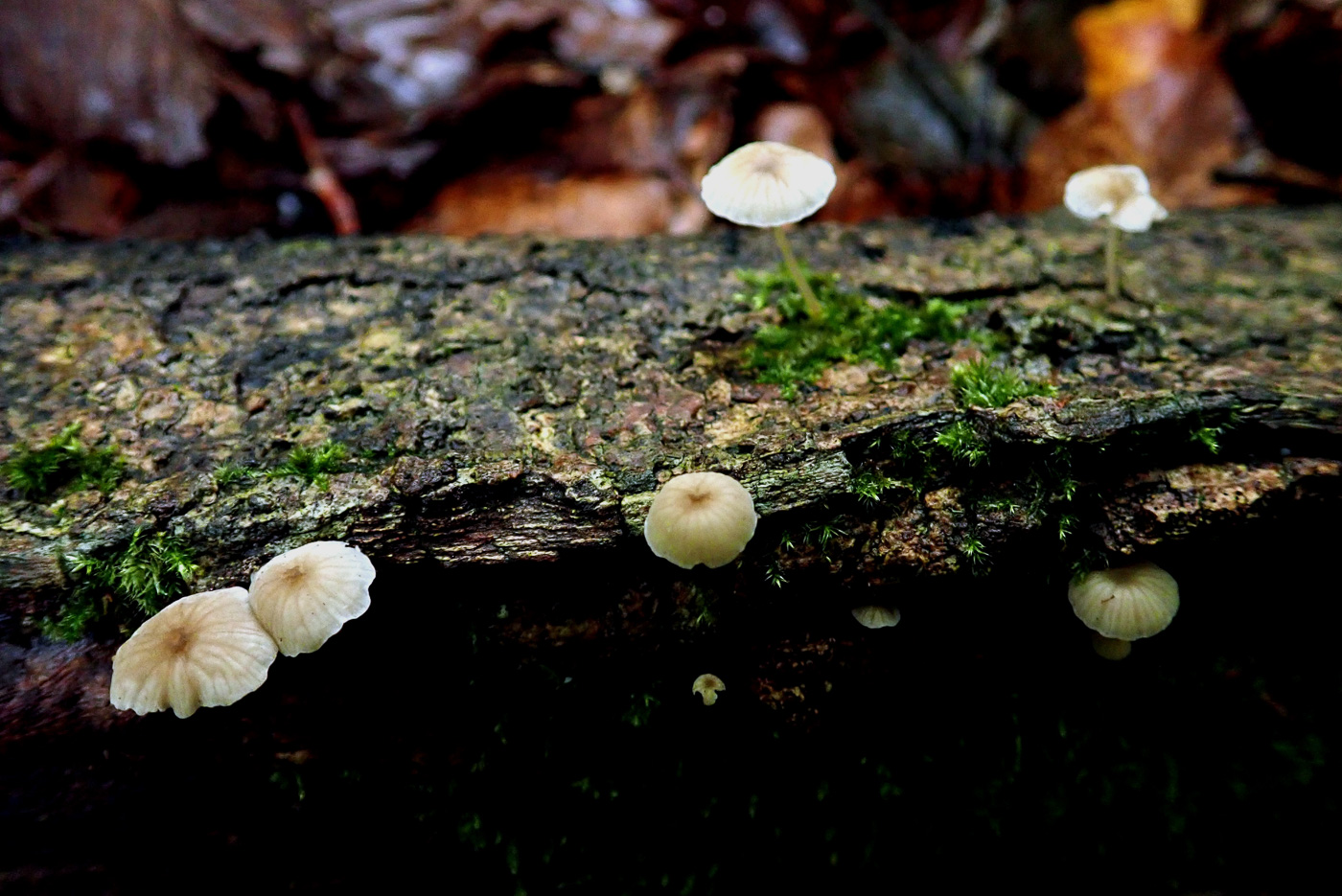
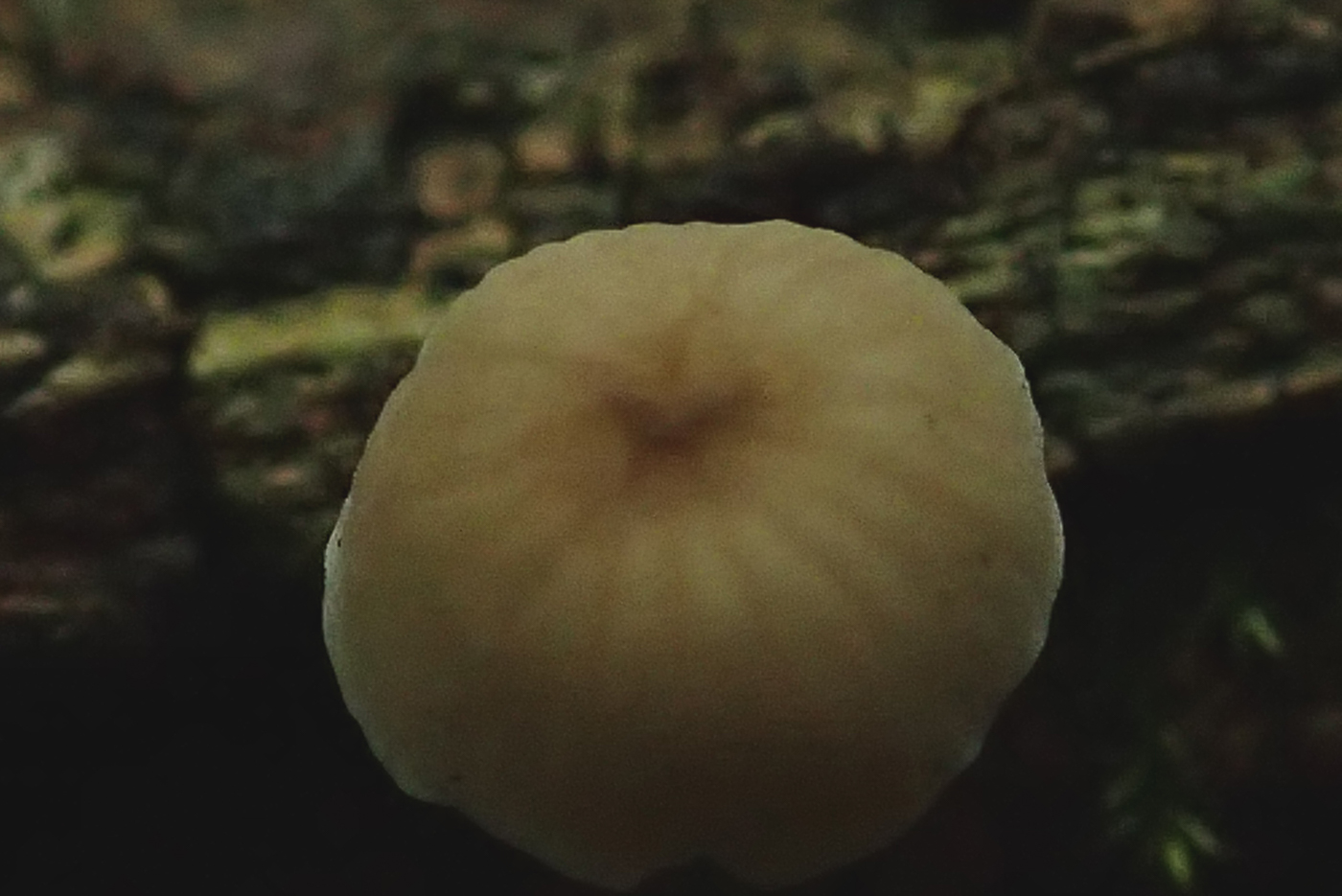
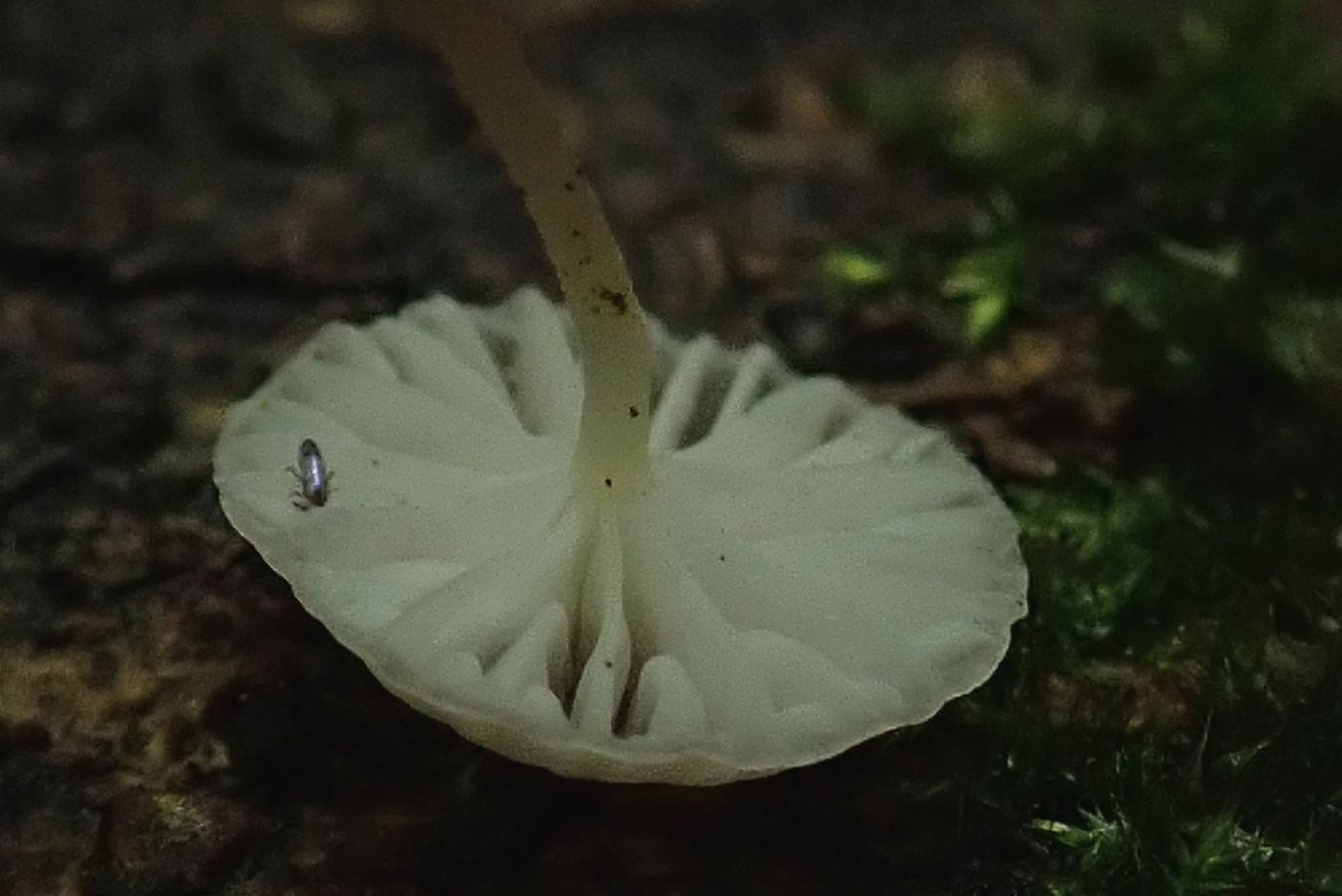 |
October 14th Mycena speirea (Bark Bonnet)
Penny found this small Bonnet fruiting on Beech bark in Kings Wood. Caps are less than 1 cm across and their rounded slightly fluted shape is typical, also the pale yellowish brown colour with a dark dot in the slightly sunken centre. Also note that the gills are slightly decurrent (sloping). A common species on bark of several trees but often on Beech.
|
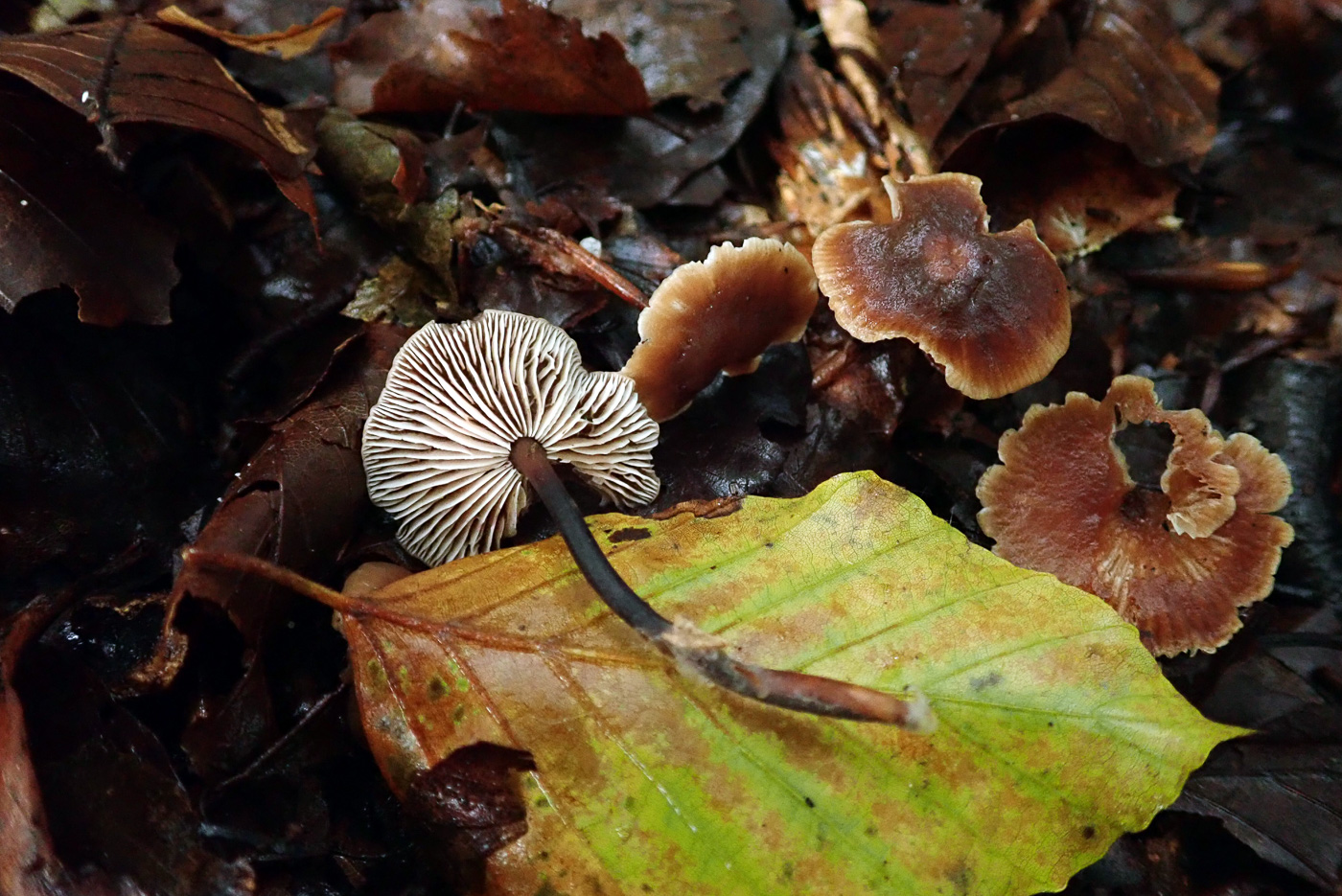 |
October 14th Gymnopus brassicolens (Cabbage Parachute)
The smell of this small species packs a punch! Previously in the genus Micromphale (and possibly about to move to Marasmiellus) it was found by Penny Cullington in Beech litter in Kings Wood. Caps are only about 2 cms across but are bright red brown with a pale rather frilly rim; gills are crowded but shallow; the stem is dark red to black and almost woody. Put it to your nose for a whiff of overcooked school cabbage mixed with garlic - unmistakable.
|
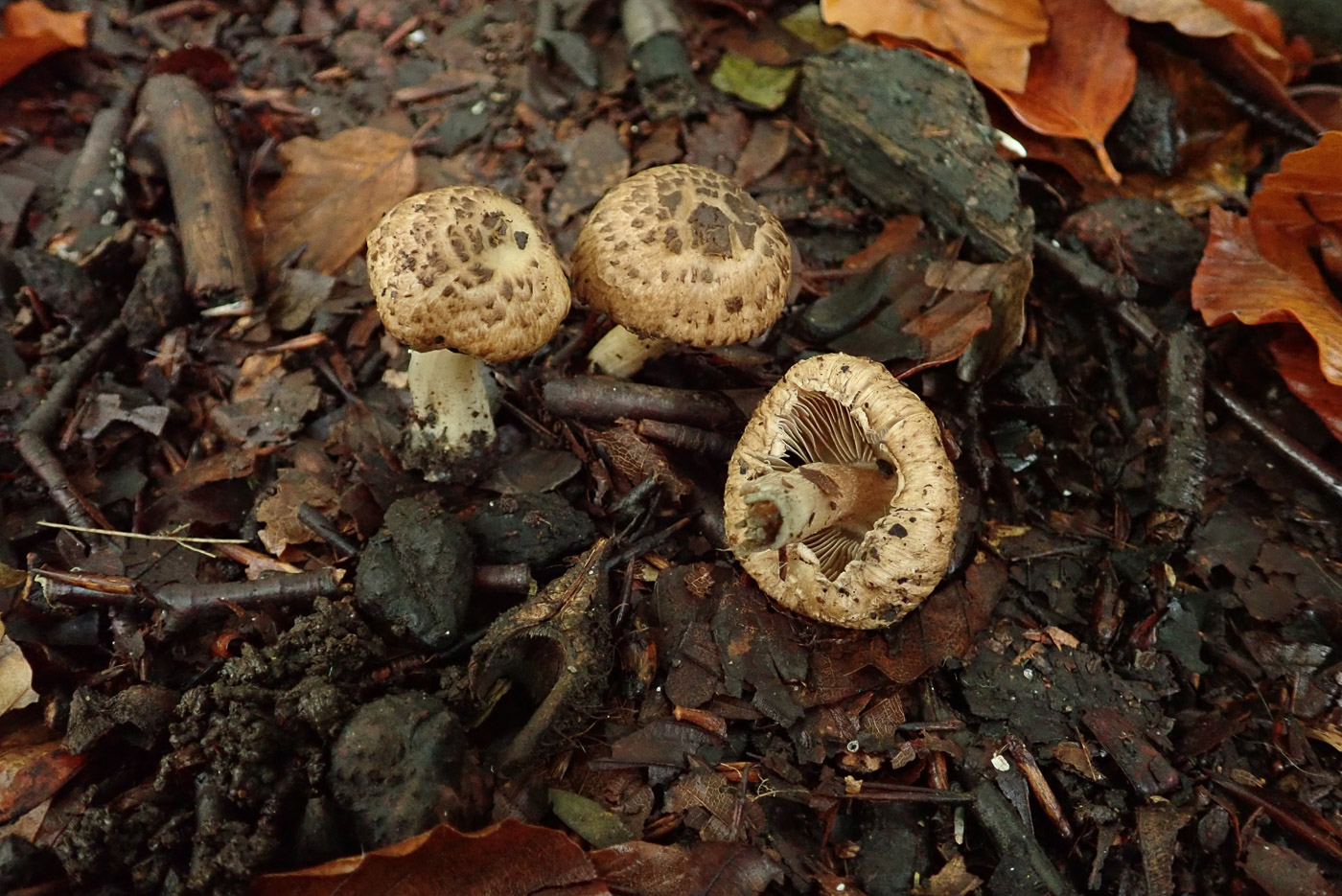 |
October 14th Inocybe erinaceomorpha (a Fibrecap with no common name)
Kings Wood provided the first records of this rare Fibrecap for over 50 years when Penny Cullington discovered it here a few years ago when a boy from a school party she was taking round handed it to her. Since then it has appeared here fairly frequently but in very few other places in the country. For a Fibrecap it is quite an easy one to recognise, having two redeeming features: a cap with the large dark brown scales on a beige background, and a distinctive and pervasive smell of peardrops!
|
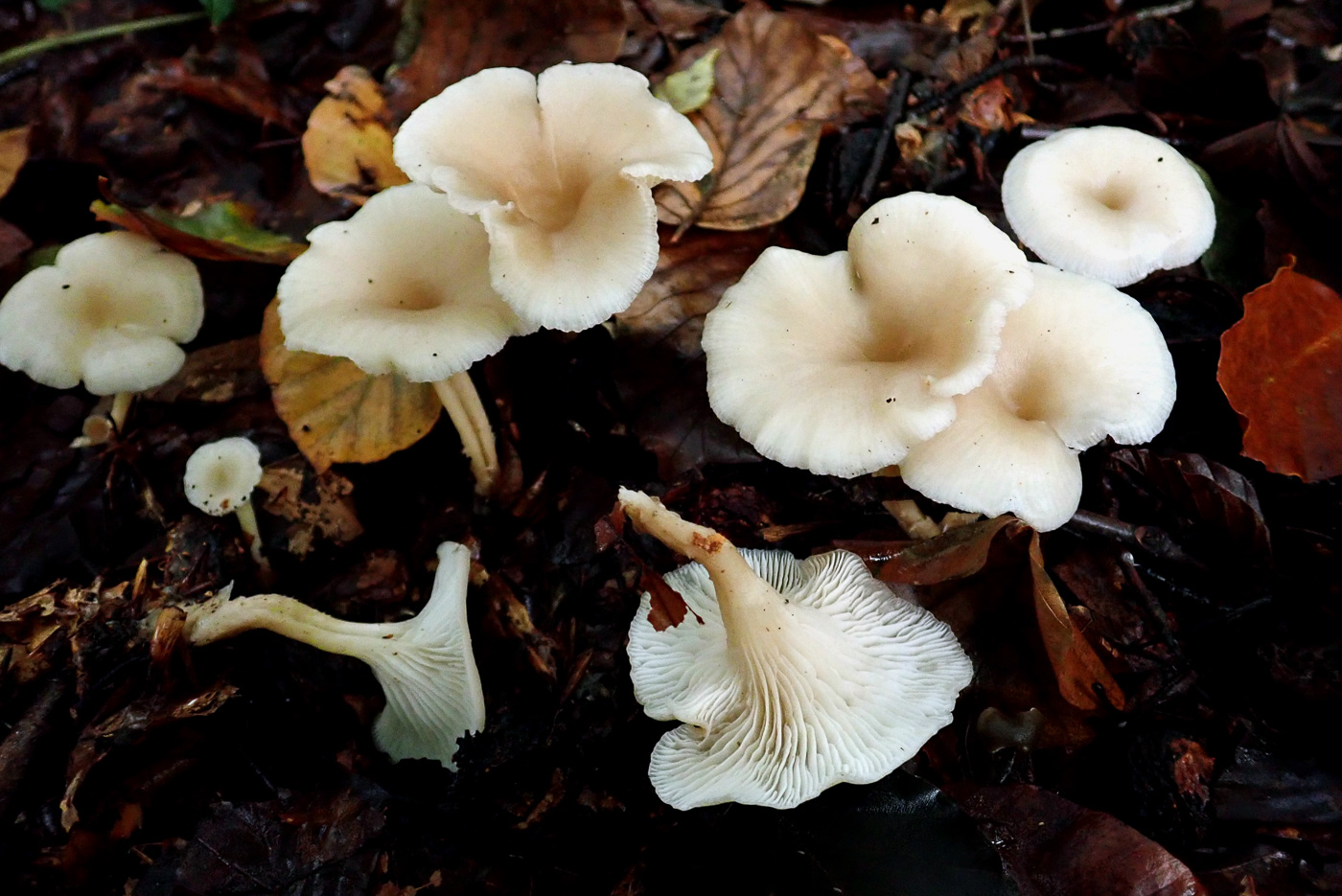 |
October 14th Singerocybe (previously Clitocybe) phaeophthalma (Chicken Run Funnel)
Yet another genus name change to get used to here: this relatively common species of Funnel was fruiting in good numbers in Beech litter in Kings Wood, found by Penny Cullington. There are quite a few very similar pale to whitish medium sized Funnels which are not easy to name to species even with a scope. Smell can play an important role, however, and this species is one which has a very distinctive smell said to be of wet feathers - hence its common name. If you're finding it hard to imagine that smell, think of a wet dog in the back of a car - that ticks the box nicely!
|
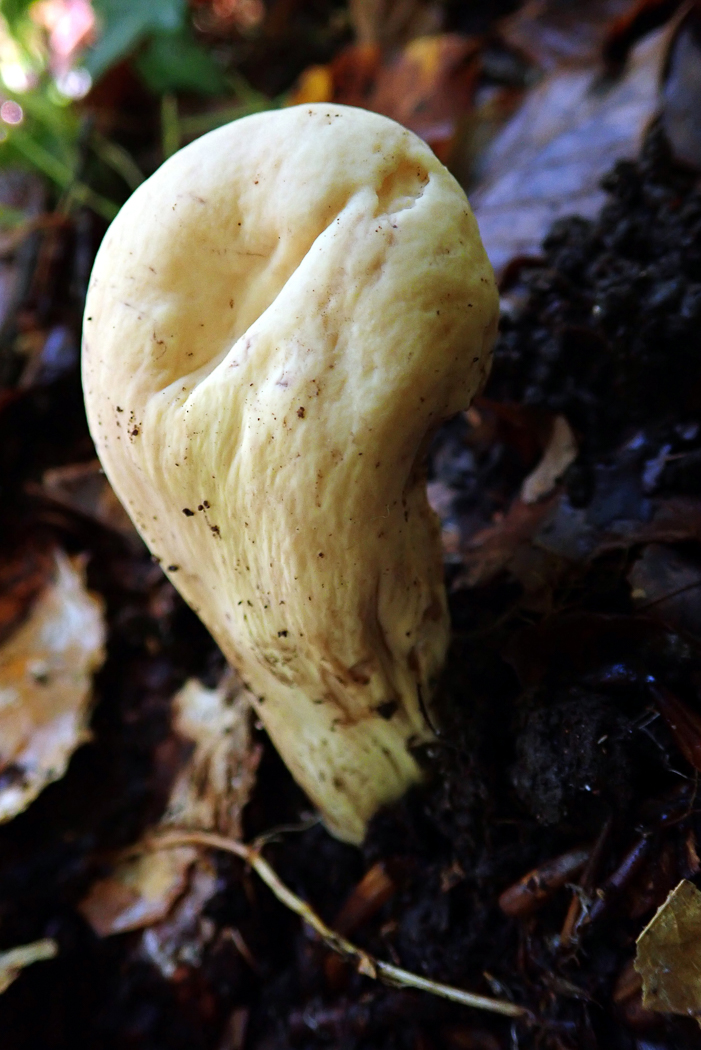 |
October 14th Clavariadelphus pistillaris (Giant Club)
Penny Cullington was pleased to find this quite rare species just emerging in Beech litter in Kings Wood. Just a singleton, it was about 8 cms tall x 4 cms across but can get to upwards of 15 cms, and can't really be mistaken for anything else. Thought to be an indicator species of ancient woodland but also possibly declining in Britain, it was nice to find it still fruiting here.
|
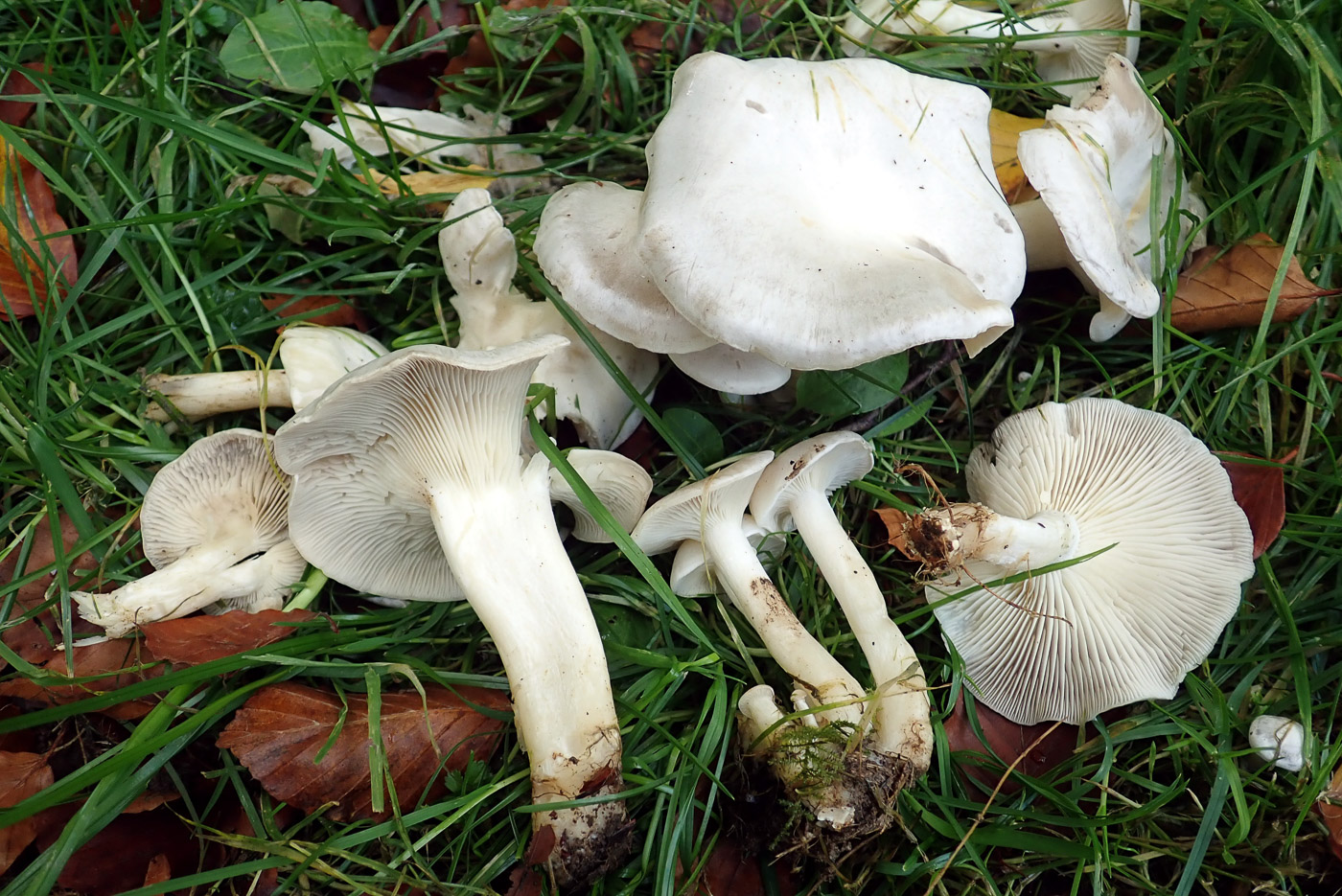
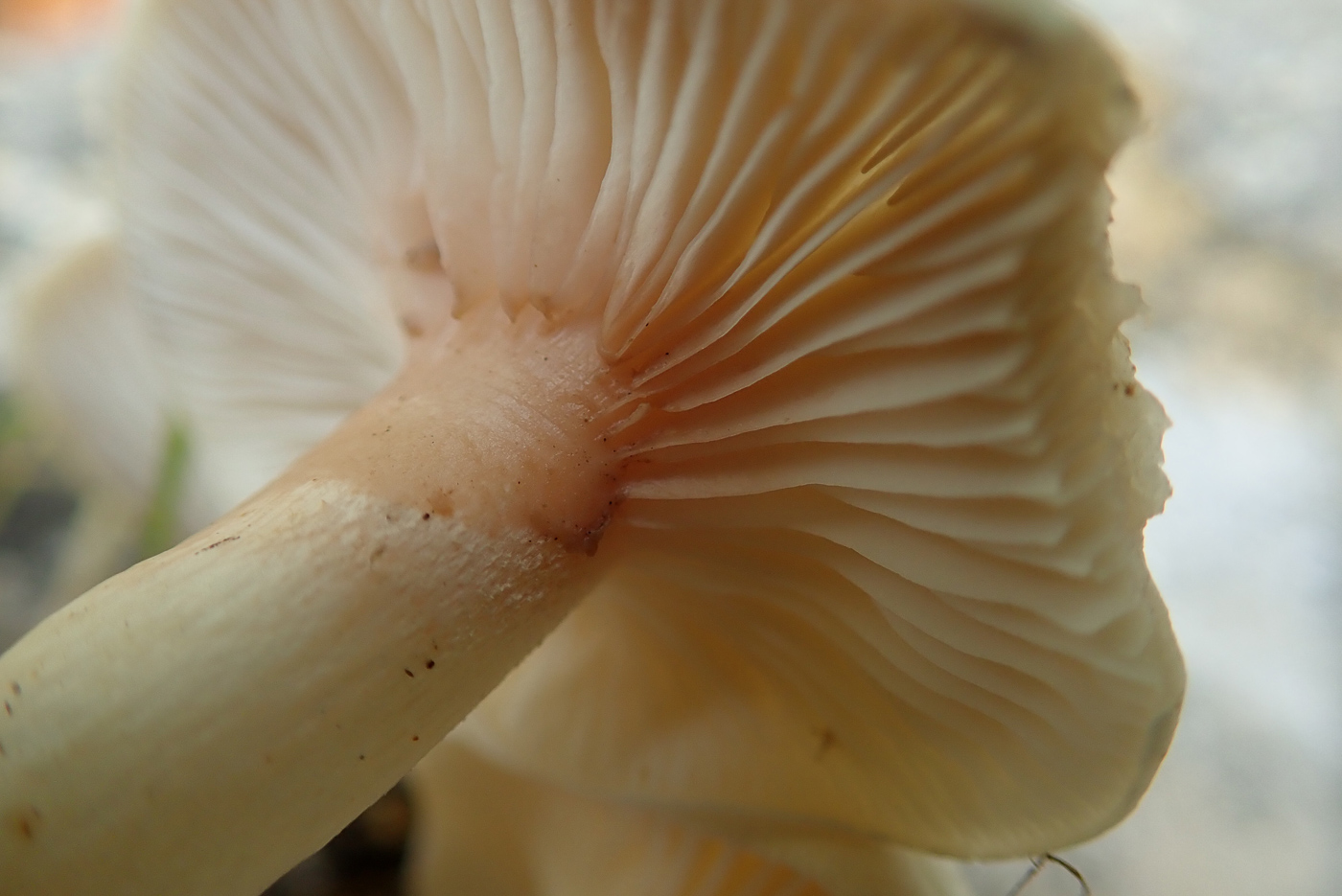 |
October 14th Leucocybe connata - previously Lyophyllum connatum (White Domecap)
Penny Cullington recalled finding this species in exactly the same spot last year, on a grassy bank near the car park in Kings Wood. Similar to a Tricholoma but lacking the unpleasant smell typical of the white species therein, this species can get to about 10 cms across and often causes difficulty because it doesn't turn up that often, though is not rare. One trick to confirm the identity in the field: if you rub a crystal of Ferrous Sulphate on the any part of the fruit body it will turn violet (though this may take 30 minutes or so). It has a smell difficult to put one's finger on: for some of fresh peas, for other of bitter almonds!
|
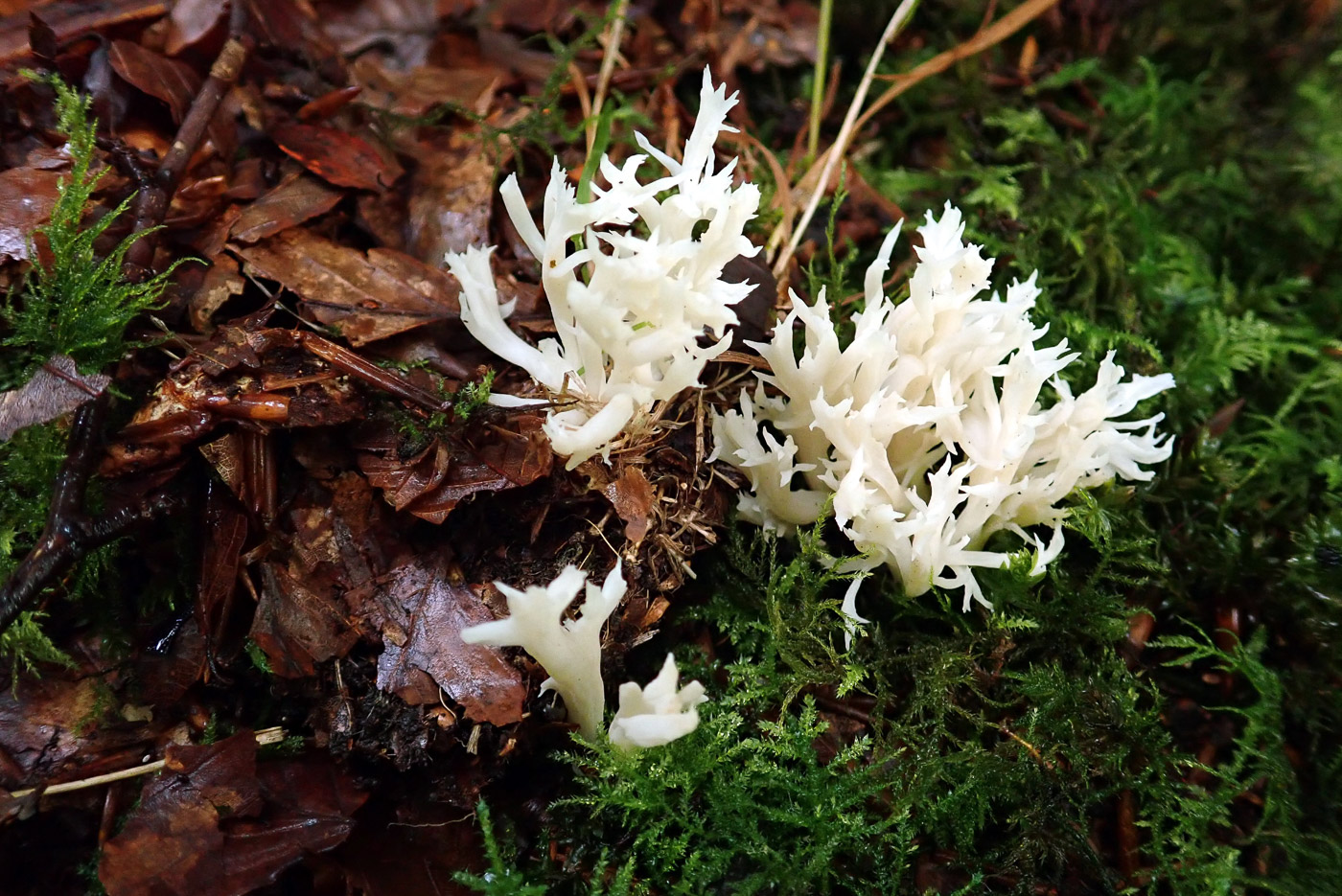
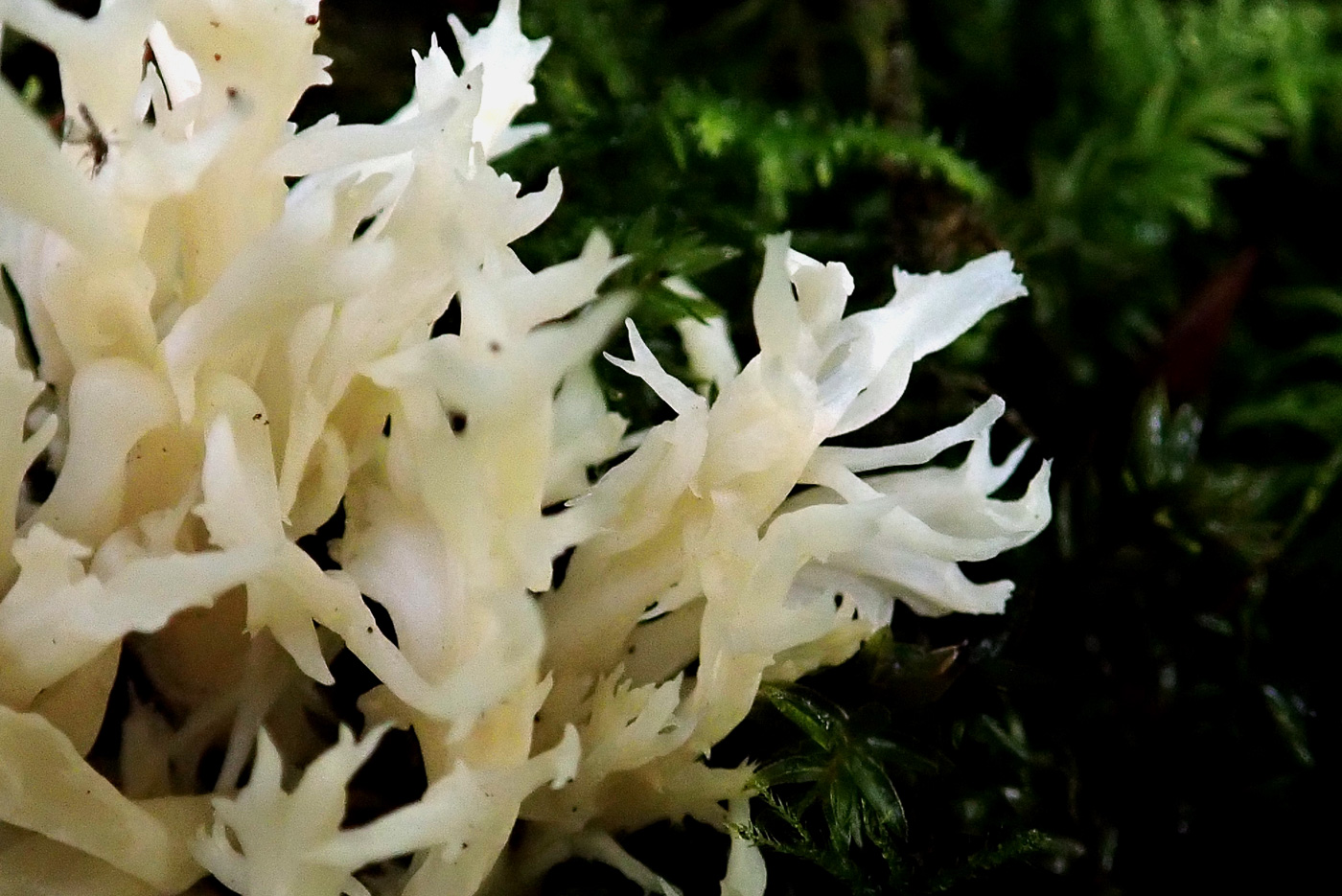 |
October 14th Clavulina coralloides (Crested coral)
This attractive species was found in Beech litter in Kings Wood by Penny Cullington. Previously C. cristata, it is very common in our Beech woods though easy to confuse with the equally common and very similar C. cinerea (see photo dated Oct 12). Today's species is pure white when fresh and the forking tips are acute. See notes re C. cinerea for more comparison etc.
|
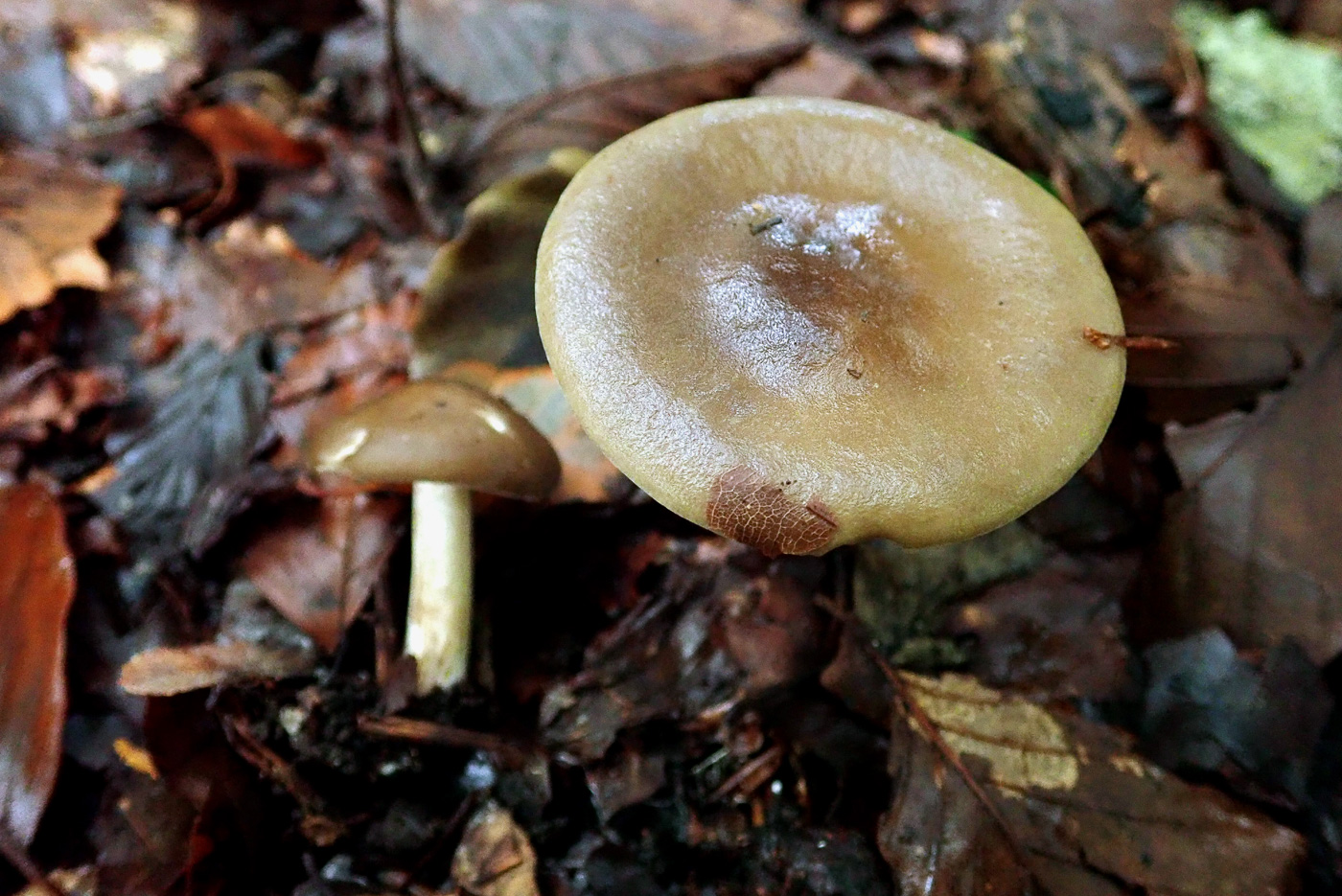
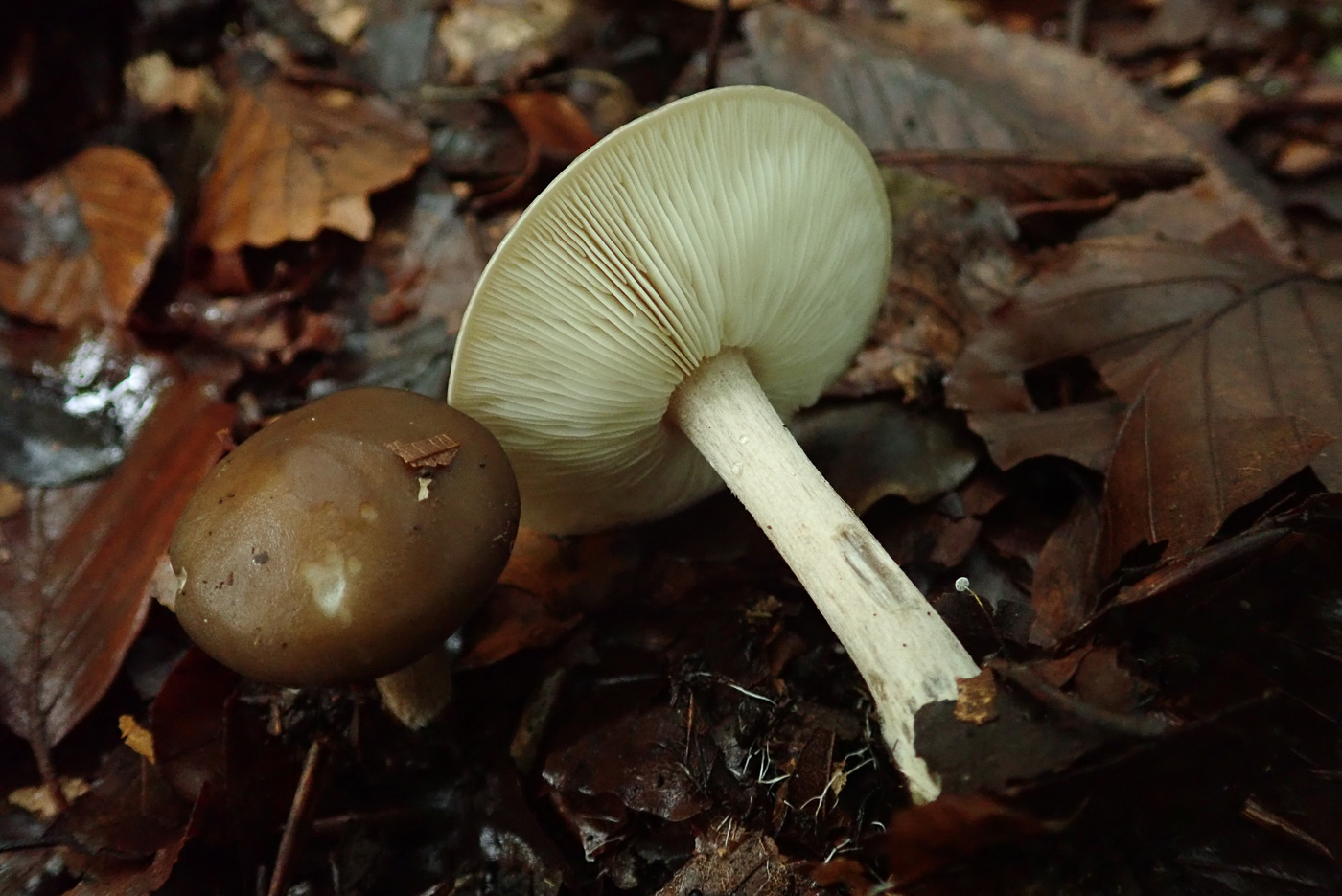 |
October 14th Melanoleuca polioleuca (Common Cavalier) 
Penny Cullington found these two fruit bodies in Beech litter in Kings Wood. Another common brown capped mushroom of woodland litter, this species has been slow to appear this season and is one which takes time to recognise when you're first learning about fungi. The genus is not the most eye-catching with caps (sometimes up to 10 cms across or more) some shade of brown and smooth to shiny. They usually have a broad swelling in the centre and the gills are off white and very crowded (both features seen here). This particular species is very common and if you split the stem it has dark flesh at the base (see photo 3). It's a genus which often needs work with a scope to determine to species.
|
October 13th 2020
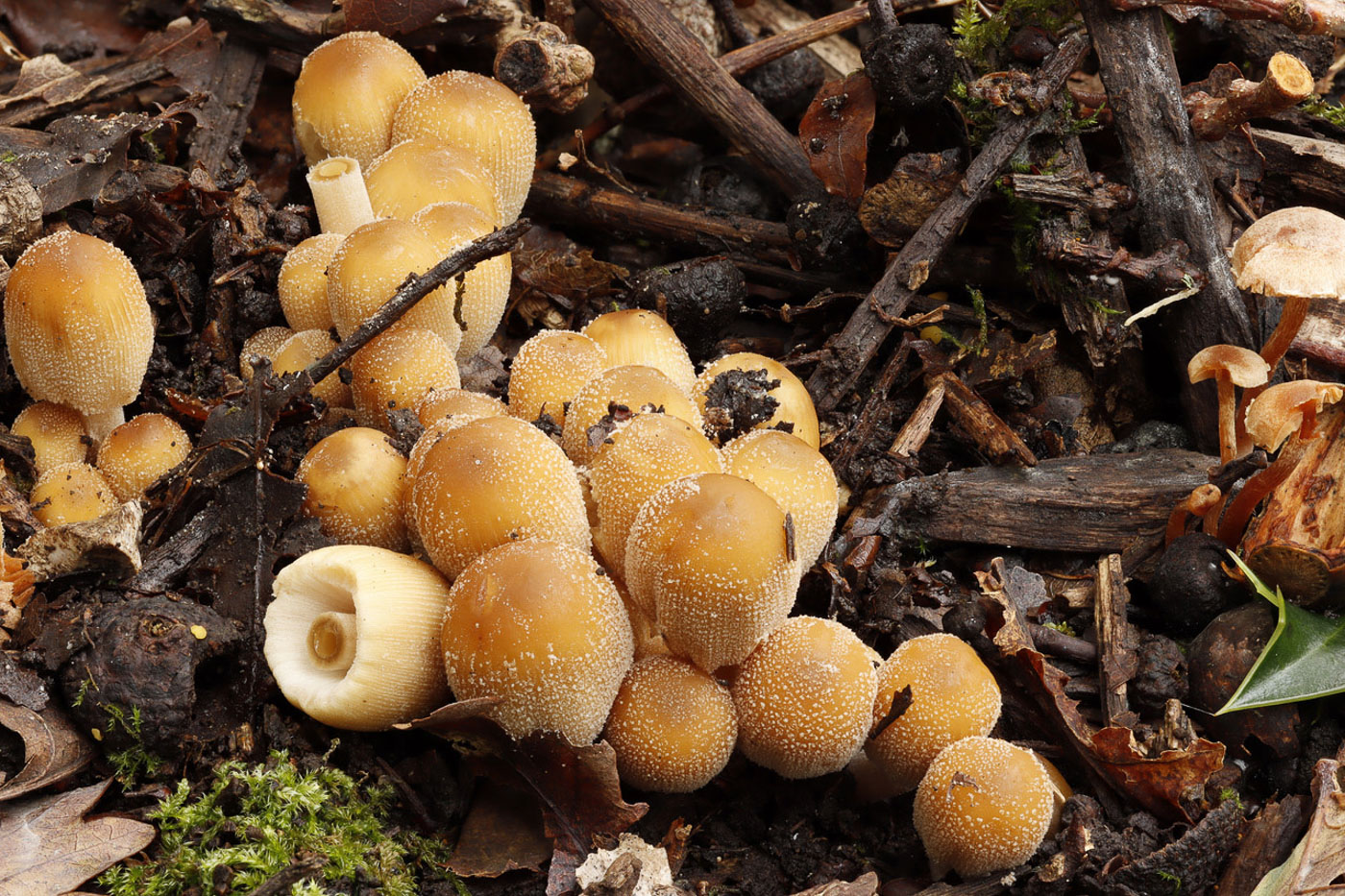 |
October 13th Coprinellus micaceus (Glistening Inkcap)
We have a photo of this species dated Sept 11th, but this young collection found by Paul Goby in woody litter in Naphill Common is such a good example of the species that it's worth including again. Here one can see the reason for the 'glistening' effect referred to in the common name, caused by the tiny flecks of veil - like icing sugar - which coat the cap surface when young and fresh. However, they tend to disappear later which makes identity in the field more problematic as there are other very similar Inkcaps with which the species can then be confused.
|
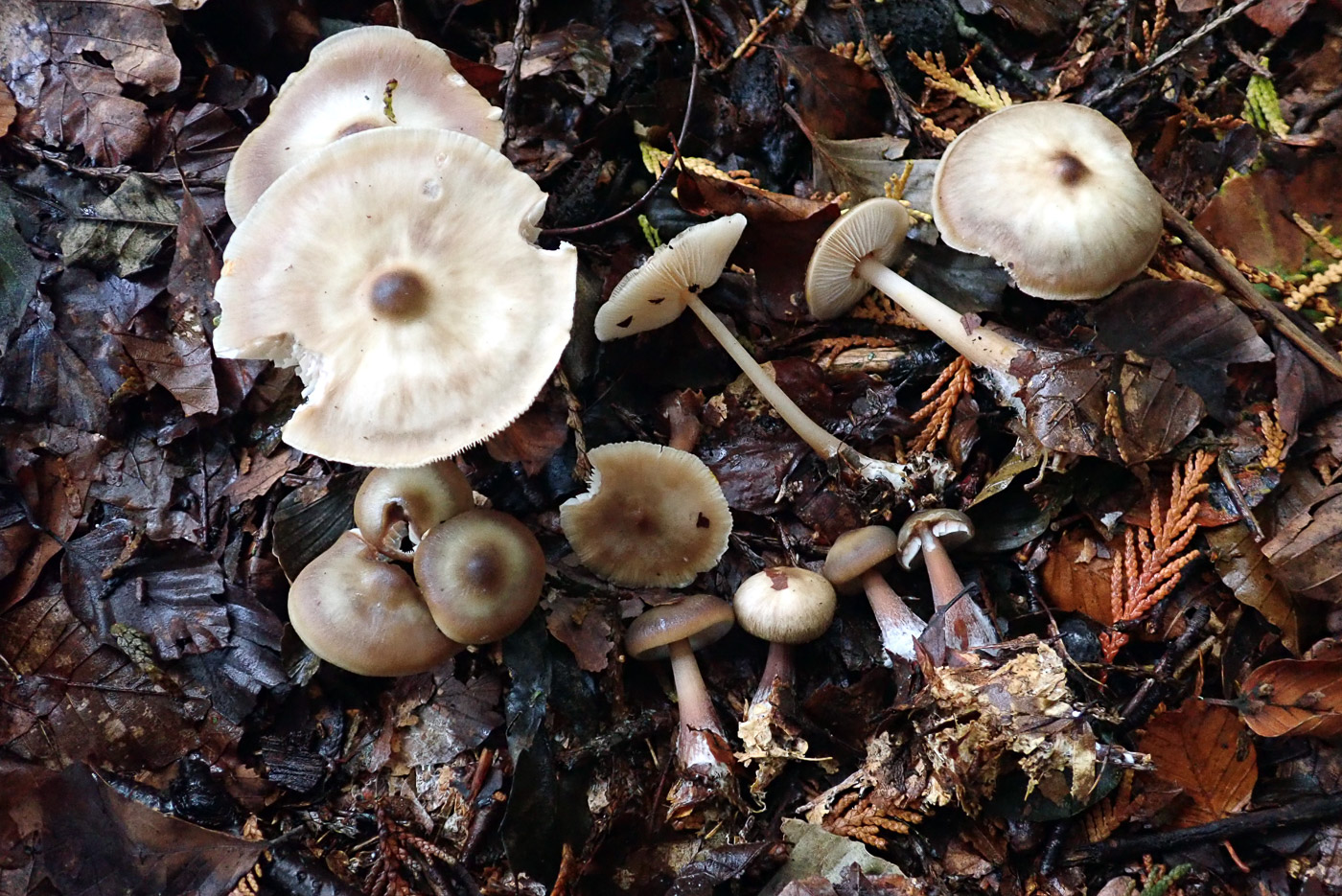 |
October 13th Rhodocollybia butyracea (Butter Cap)
Previously in the genus Collybia, this species is normally considered a late season fruiter so its appearance at Pulpit Hill in Conifer litter today , found by Penny Cullington, could indicate that our fruiting season is winding down already? This is a deceptive species and often causes confusion over its identity in the field because the cap colour is extremely variable, from dark reddish brown when fresh and moist to almost white when drier. The stem is often a useful pointer, however, and is hollow (pinch it to feel this) and typically tapers upwards with a darker lower part which tends to have a purple hue. The young specimens at the bottom show this nicely. The common name arises from the very greasy feel to the cap surface if you stroke it, but be aware that when really dry this will be far less obvious!
|
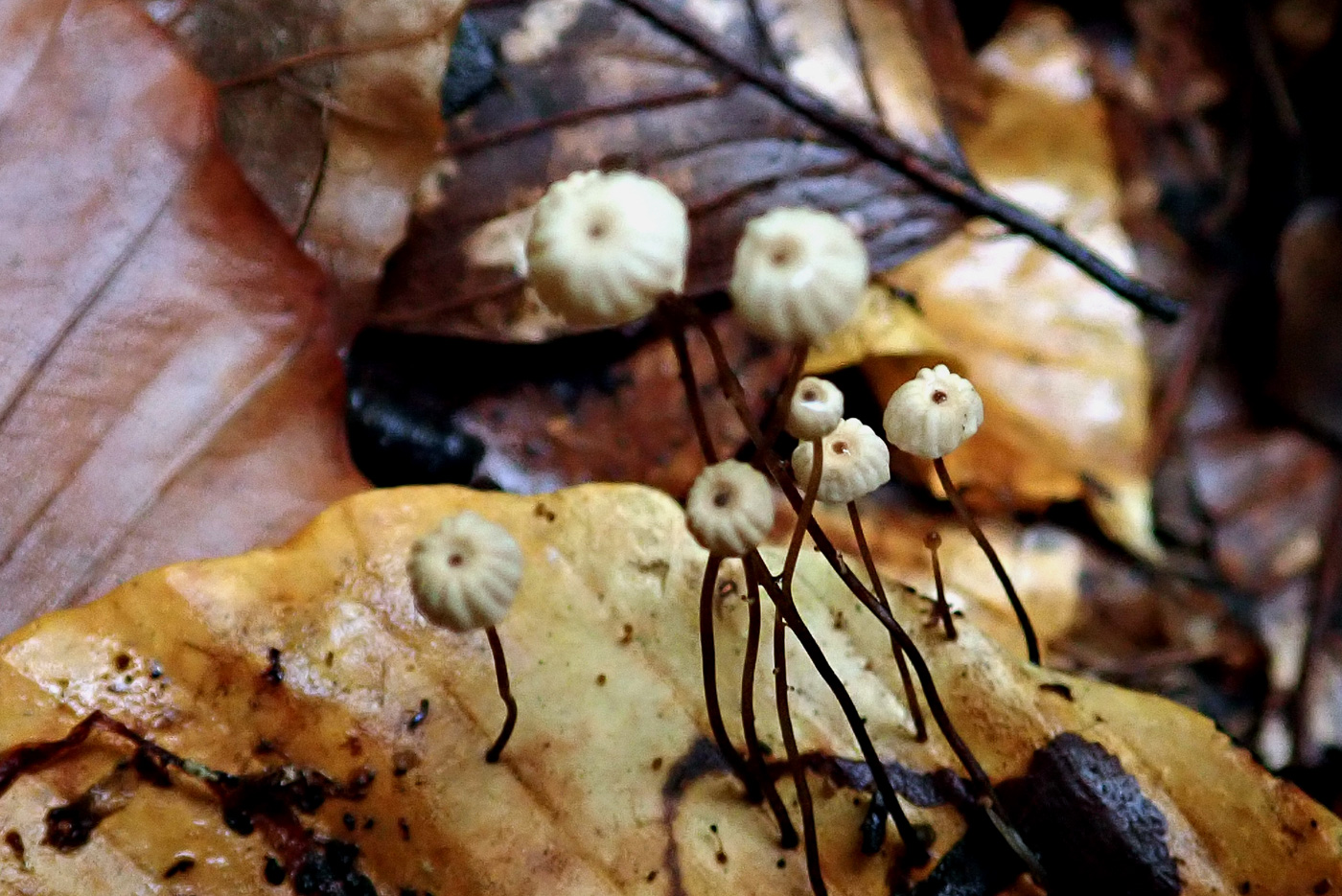
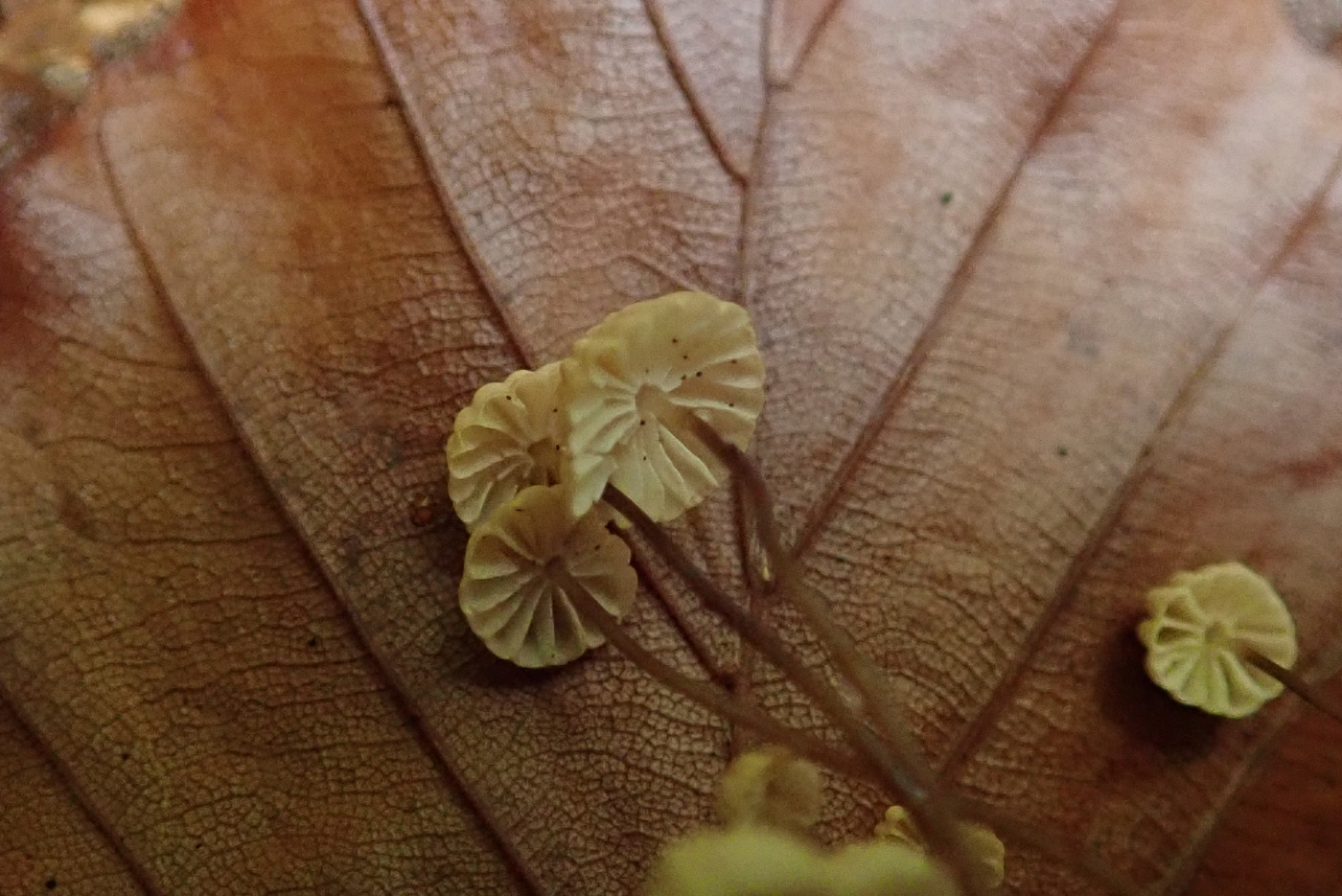 |
October 13th Marasmius bulliardii (a Parachute with no common name)
This cluster of tiny little mushrooms was found by Penny Cullington at Pulpit Hill growing on a fallen Beech leaf. The species is almost identical to M. rotula (see photos dated Oct 01) but is only half the size, so caps are no more than 5 mm across at most. It has the same distinct cogwheel around the stem to which the gills are attached (these are the only two species with this feature), seen in photo 2, and apart from that feature is recognisable in the field because of its tiny size, the fluted cap with sunken dark dot in the centre and its occurrence on fallen leaves, most commonly Beech. It is not uncommon but seldom recorded for obvious reasons.
|
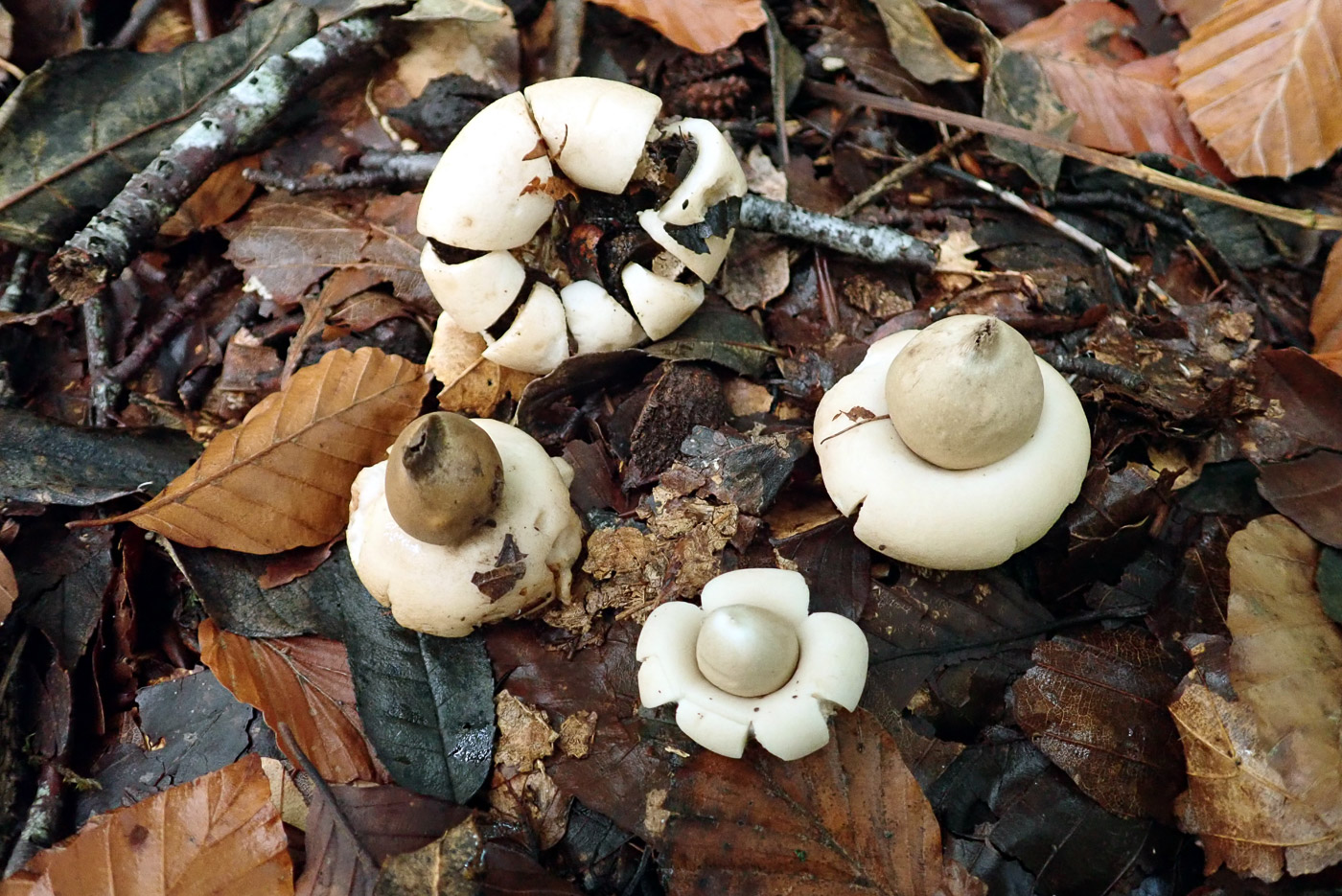
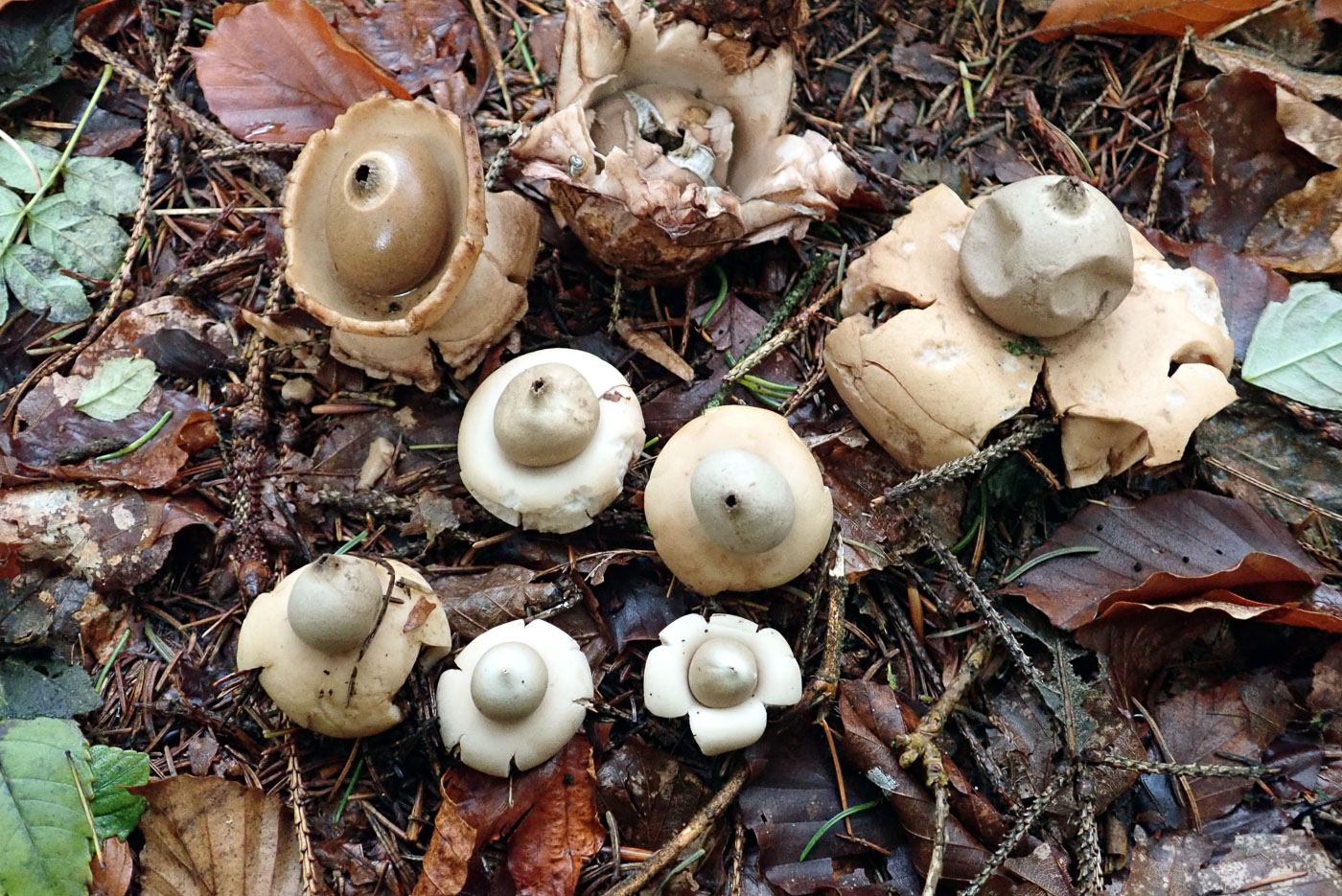 |
October 13th Geastrum fimbreatum (Sessile Earthstar)
Penny and Paul Cullington found good numbers of these enchanting little Earthstars under mixed conifer and deciduous trees at Pulpit Hill. The largest fruit body, upturned at the top left in photo 1 to show the underside, was only about 3.5 cms across, so this delicate species is considerably smaller than the common G. triplex (see also photos dated Oct 04 & Sept 03). We then came across both these two species growing together so took the opportunity to compare them side by side, photo 2, with G. triplex above and G. fimbreatum below. Note the collar in one G. triplex but absent an another, also the collarless and white fruit bodies typical of G. fimbreatum.
|
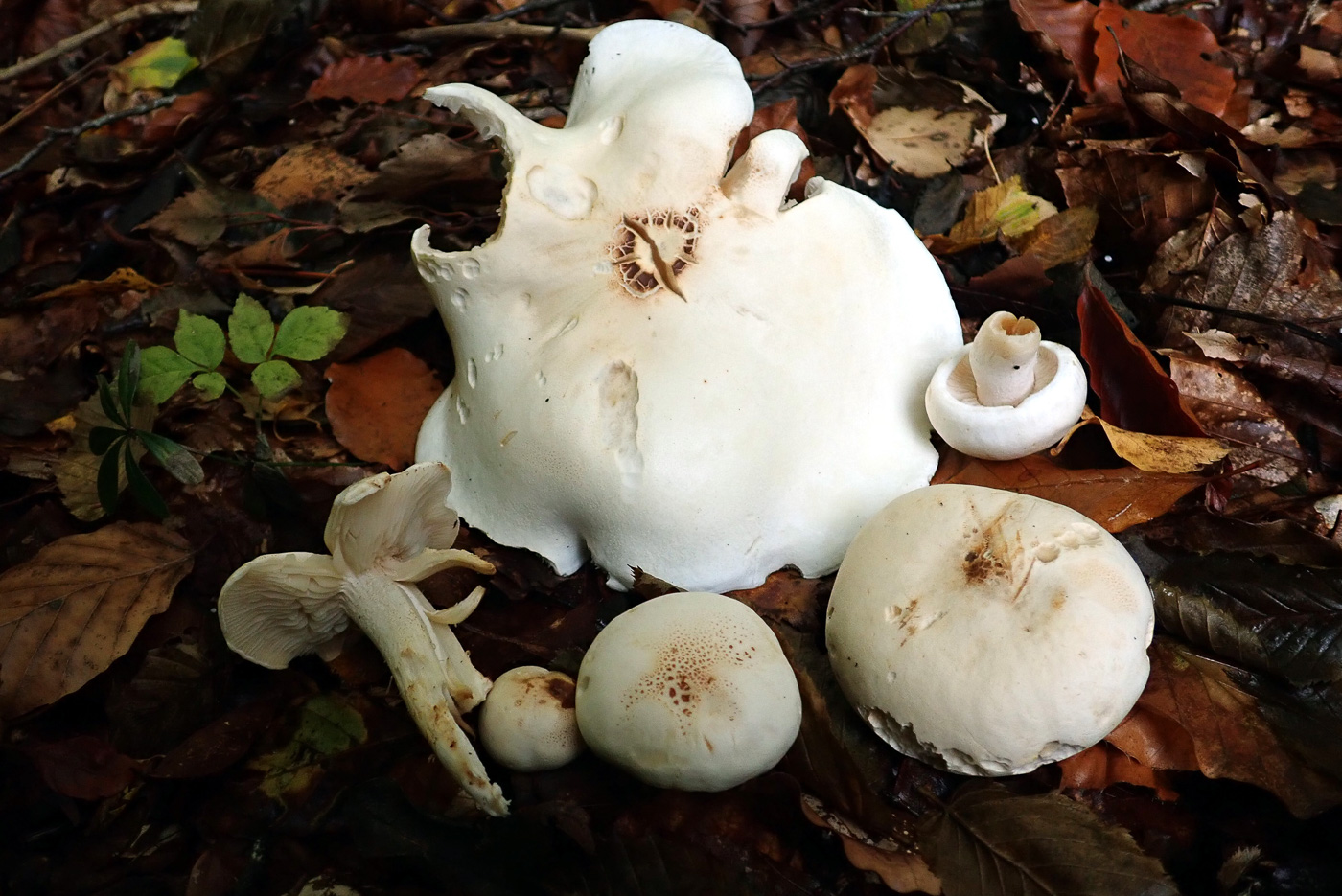 |
October 13th Tricholoma stiparophyllum (Chemical Knight)
Penny Cullington found this collection under Birch at Pulpit Hill. There are three extremely similar white capped Knights which are very easy to get confused, all of which have an unpleasant pervasive smell especially if contained in a pot. To separate them one needs to note what tree your collection is growing under. T. album grows only under Oak, today's species T. stiparophyllum grows only under Birch, and T. lascivum grows only under Beech, The problem arises when a collection is found with mixed trees nearby, in this case it's probably safer to be content to call it one of the smelly white Knights and leave it at that!
|
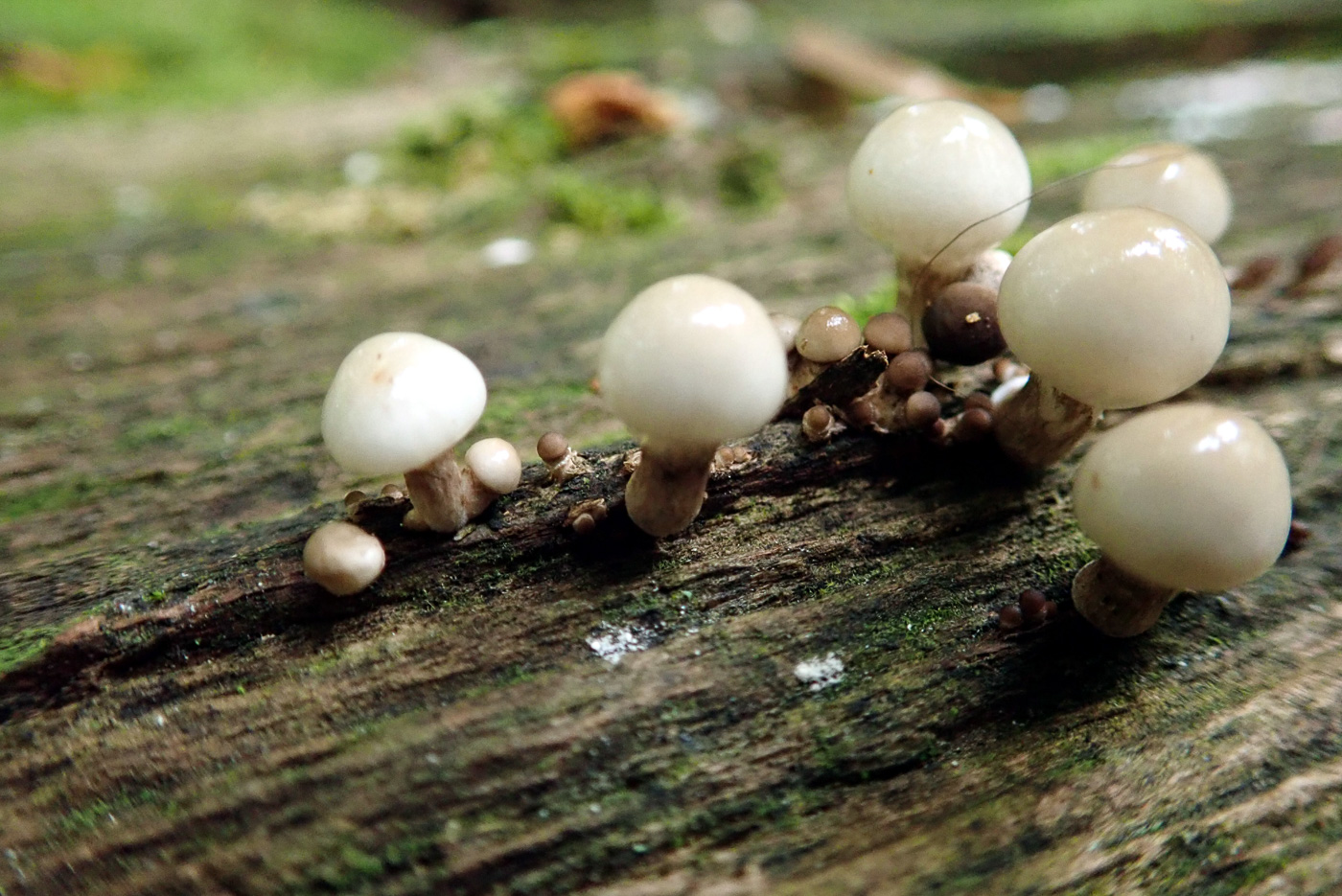
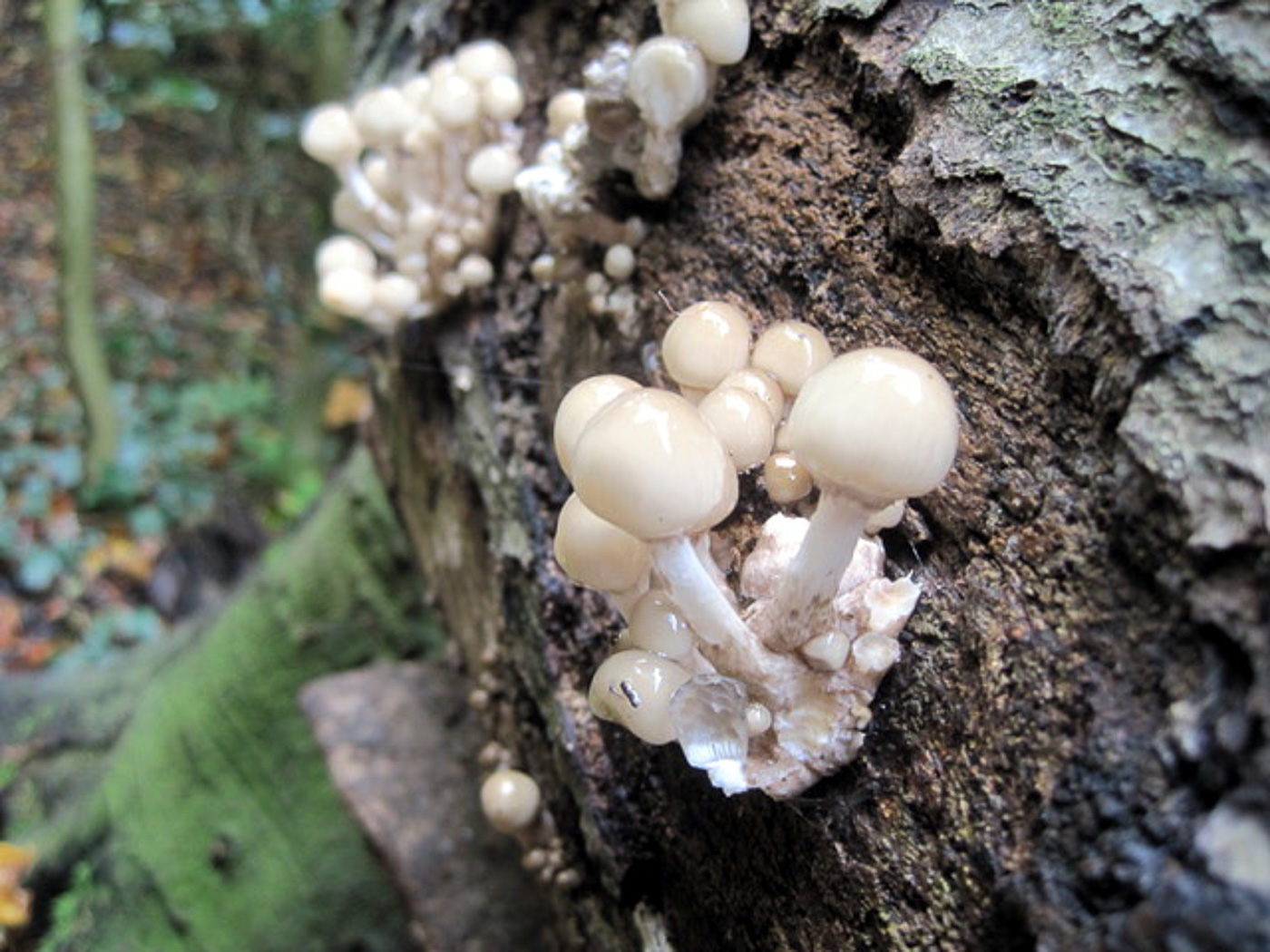 |
October 13th Mucidula mucida (Porcelain Fungus)
We already have nice examples of this dated Sept 13, but here we have photos of the very early 'button' stage of the fungus (on fallen Beech at Gussetts Wood, Penny Cullington) and of developing young fruit bodies (Captain's Wood, Greg Douglas). It's not always easy to identify fungi when they're at a different stage from the examples given in the literature, thus their inclusion here.
|
October 12th 2020
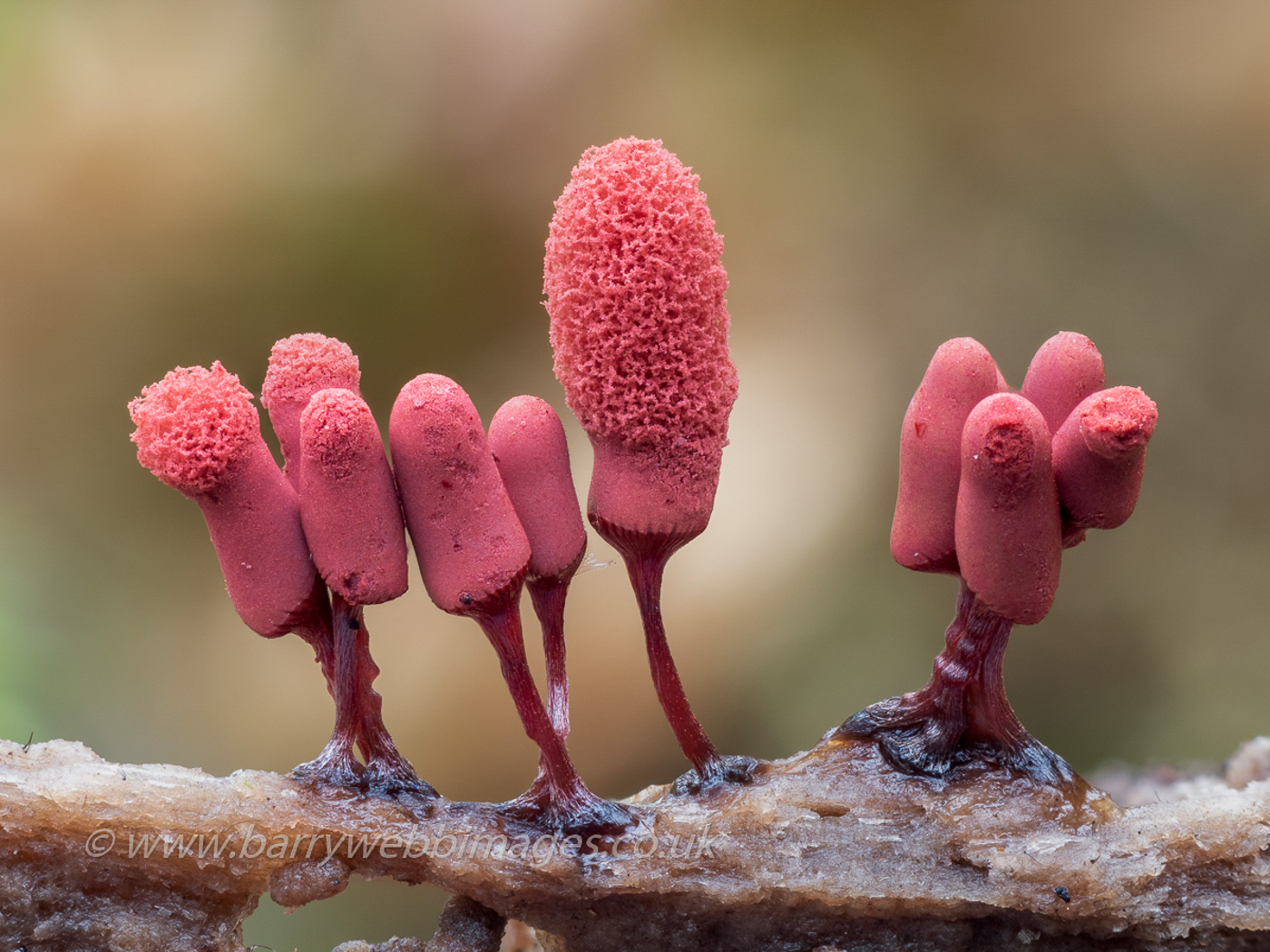 |
October 12th Arcyria denudata (a Slime Mould with no common name)
This stunning photo was taken by Barry Webb of a collection on fallen Beech in Burnham Beeches. Like most Slime Moulds, this species starts out as a cluster of slimy white blobs (the plasmodium stage) when identification even to genus is not possible. As it matures it dries off and forms these remarkable miniature 'loofahs' on shiny red stalks, the whole being 6 mms high at most! There are quite a few species of Arcyria, some rare, some common as is this one, but none are quite so eye-catching. Note how the stalk develops into a cup which supports the spore mass column, seen here in various stages of maturity.
|
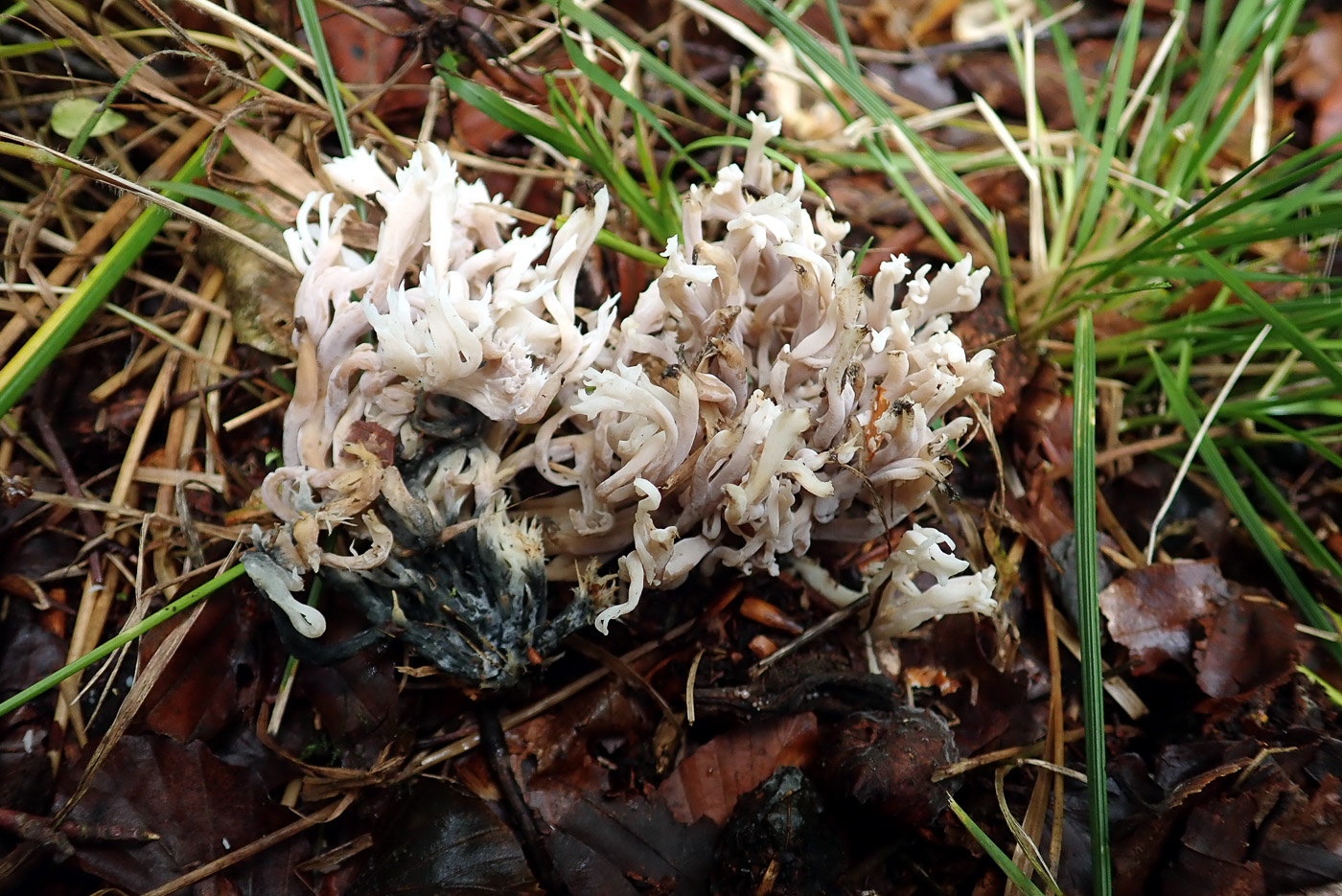 |
October 12th Clavulina cinerea with Helminthosphaeria clavariarum (Grey Coral with its parasitic fungal infection)
This clump was found by Penny Cullington in soil in Gussetts Wood. Often confused with the very similar and equally common C. coralloides (Crested Coral) - yet to be added to our list, it is not as white as that species and has a lavender-greyish hue, also the dividing tips are blunter and not as finely crested. It is very commonly found infected by the dark grey fungus seen here on the lower part of the LH cluster, as to a lesser extent is C. coralloides. Both species could be confused with the somewhat similar genus Ramaria see photos dated Sept 13 & 24) which forms larger more upright regular clusters with narrower individual limbs.
|
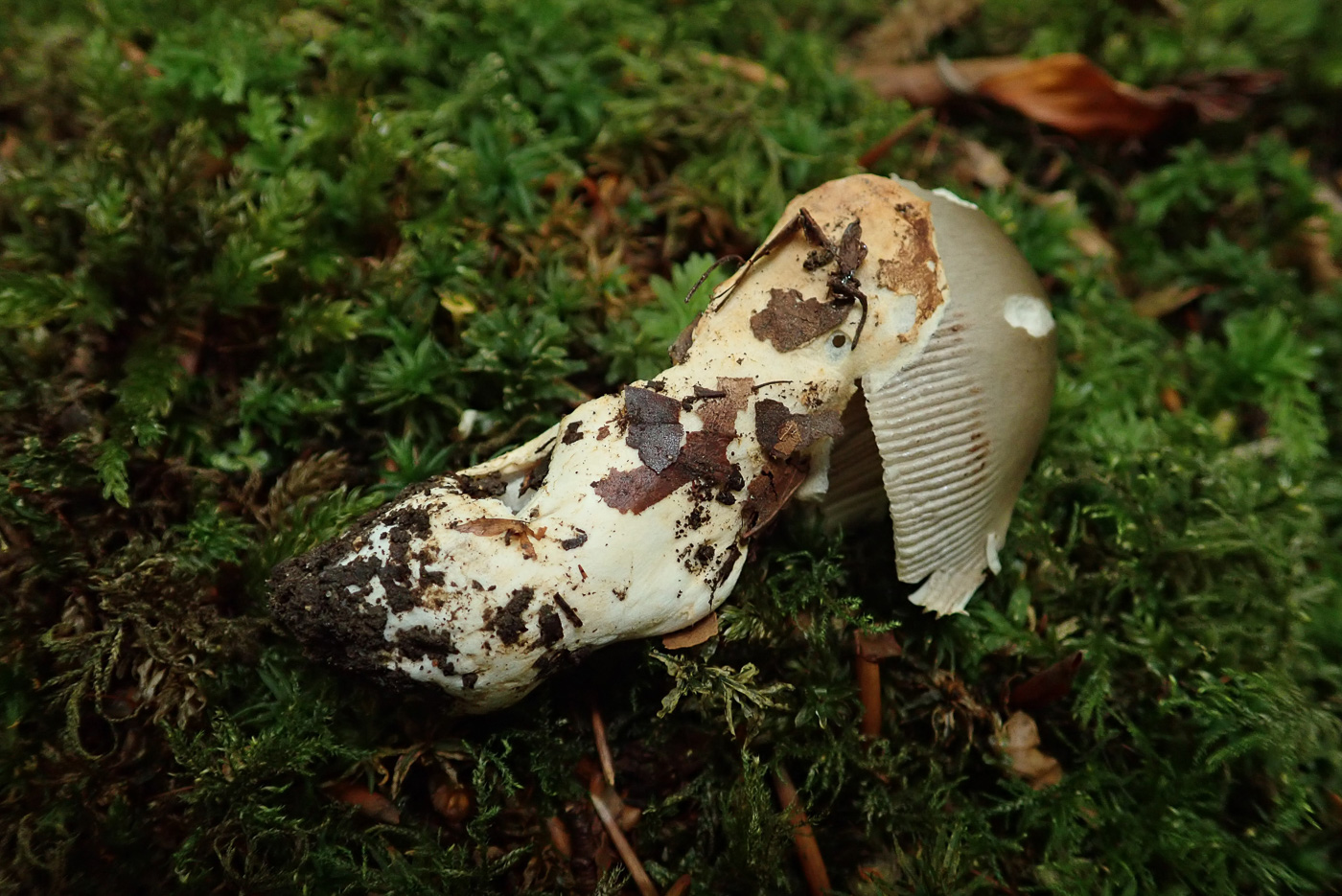
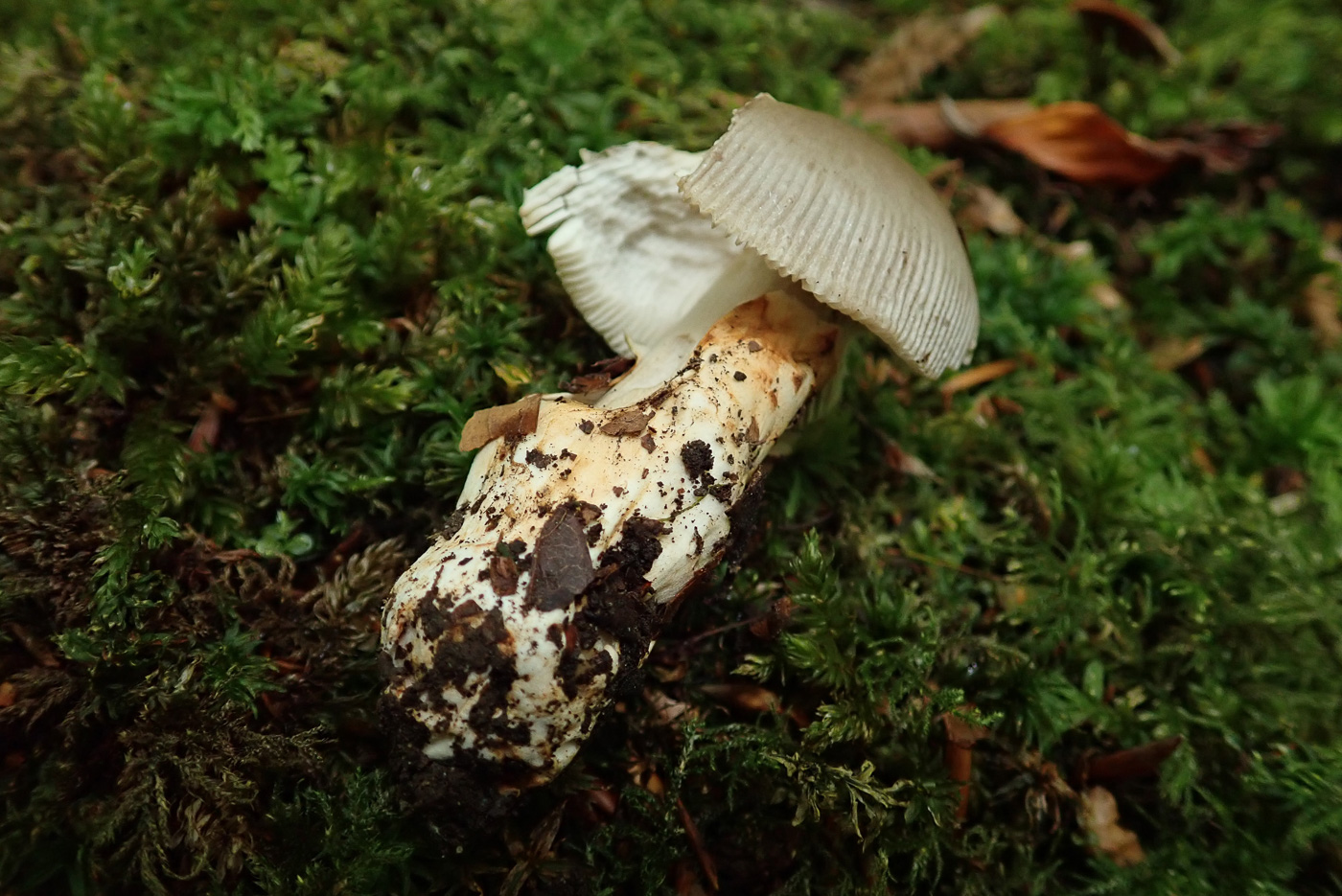 |
October 12th Amanita vaginata (Grisette)
Paul Cullington found this young and quite unusual Amanita under Beech in Gussetts Wood (photo Penny Cullington). Closely related to the much more common Amanita fulva (see photo dated Sept 15) and rarer Amanita crocea (see photo dated Sept 18), this is one of the Amanitas which lacks a ring on the stem and has a thin fragile membranous volva. Note also the clear striations on the edge of the cap already clearly developed here. It tends to be larger than A. fulva but the diagnostic feature is the grey cap colour despite the top of the volva showing the same fulvous brown tints as that species and visible here having been left on the edge of the cap in photo 1 and on the stem in photo 2.
|
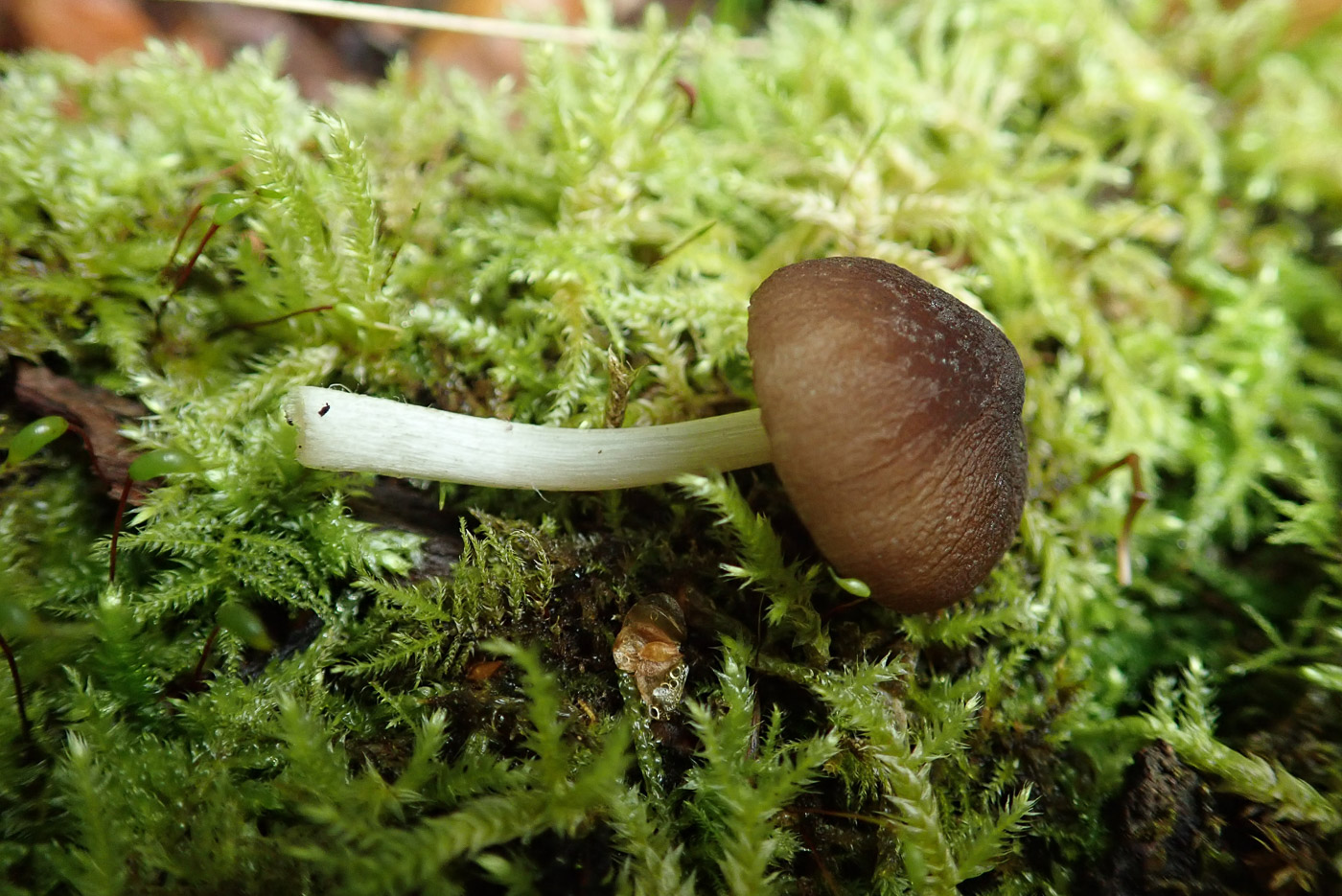
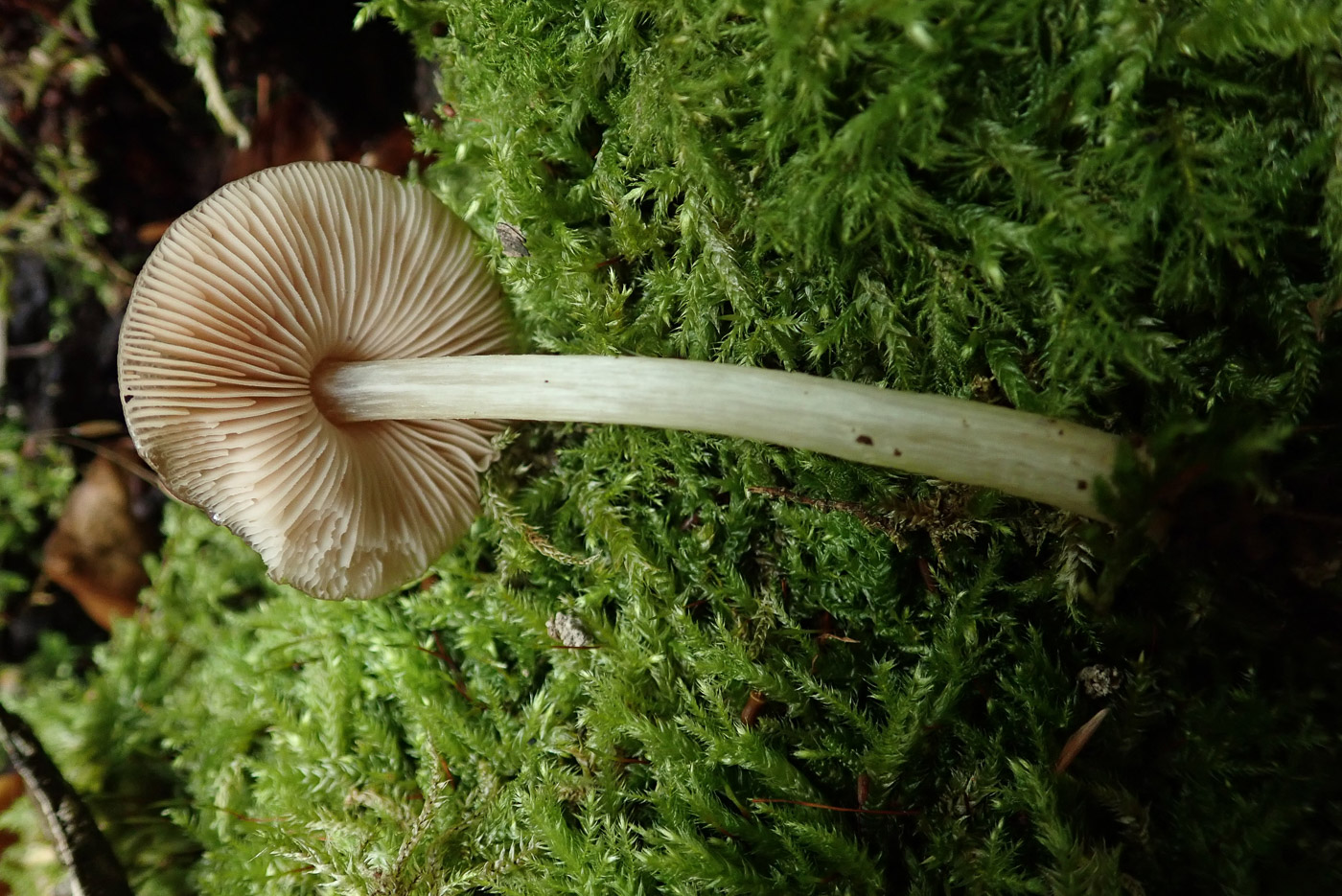
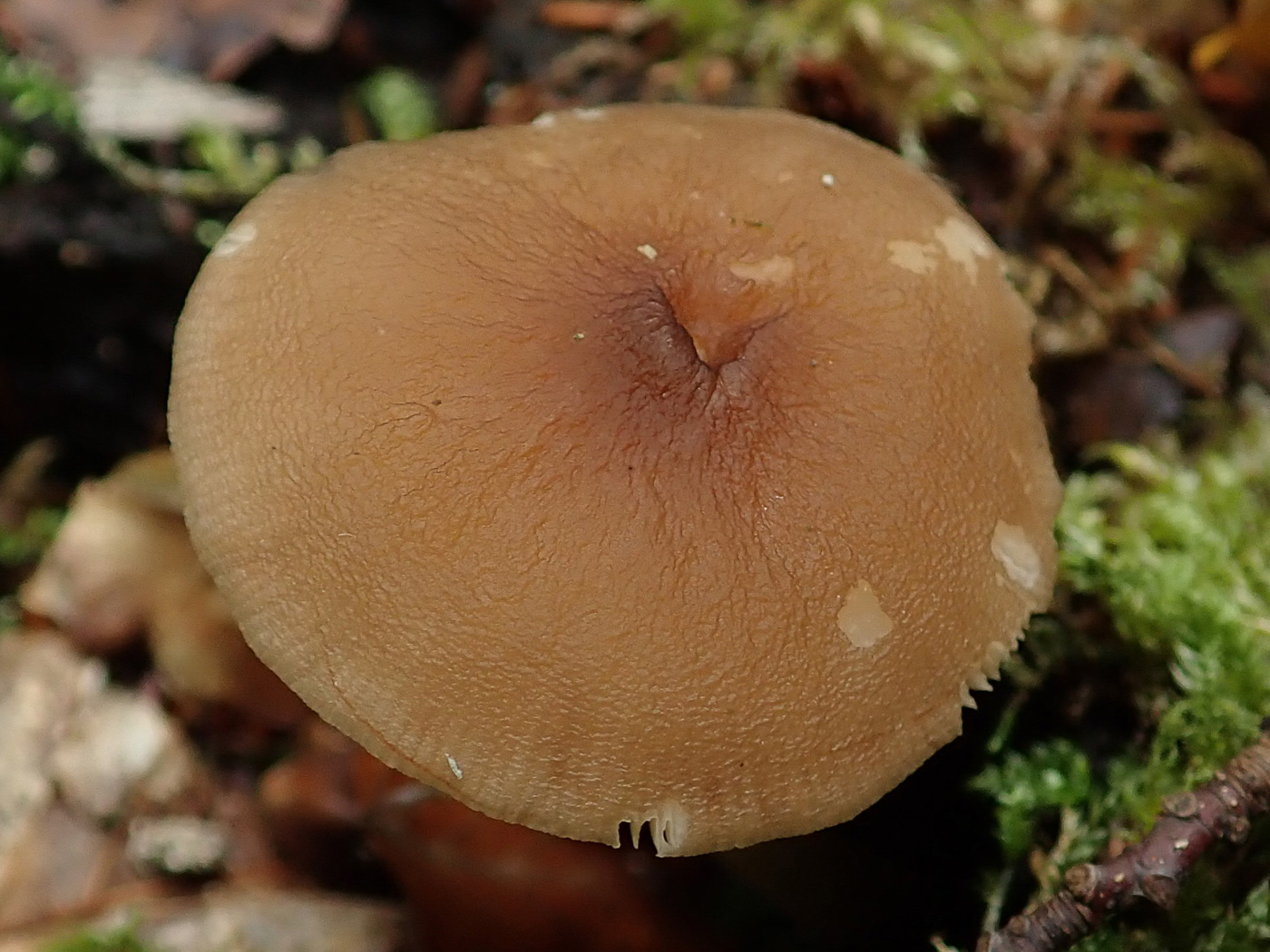 |
October 12th Pluteus phlebophorus (Wrinkled Shield) 
This genus has been poorly represented so far this season, but today Penny Cullington found a couple of separate fruit bodies on fallen Beech in Gussetts Wood. One of the smaller Shields, this occasional species has an uneven wrinkled veinlike surface (hence its Latin species name) but this is a genus which should always be keyed out with care using a scope to view not just the gill cells and spores but also the cap surface. There are quite a few very similar small species with which it could be confused. Note the free gills shown in photo 2 and the wrinkled cap surface shown in photo 3.
|
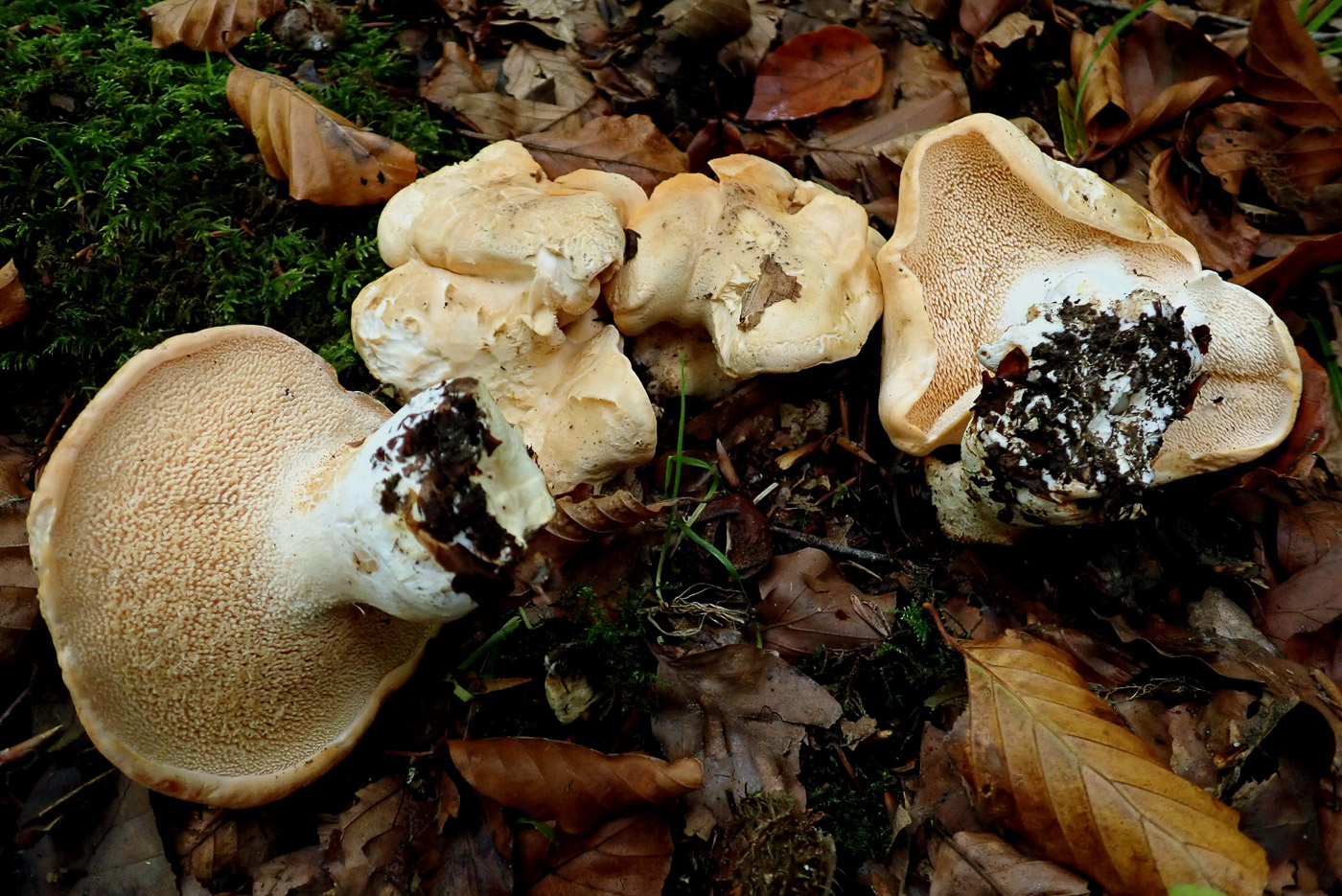
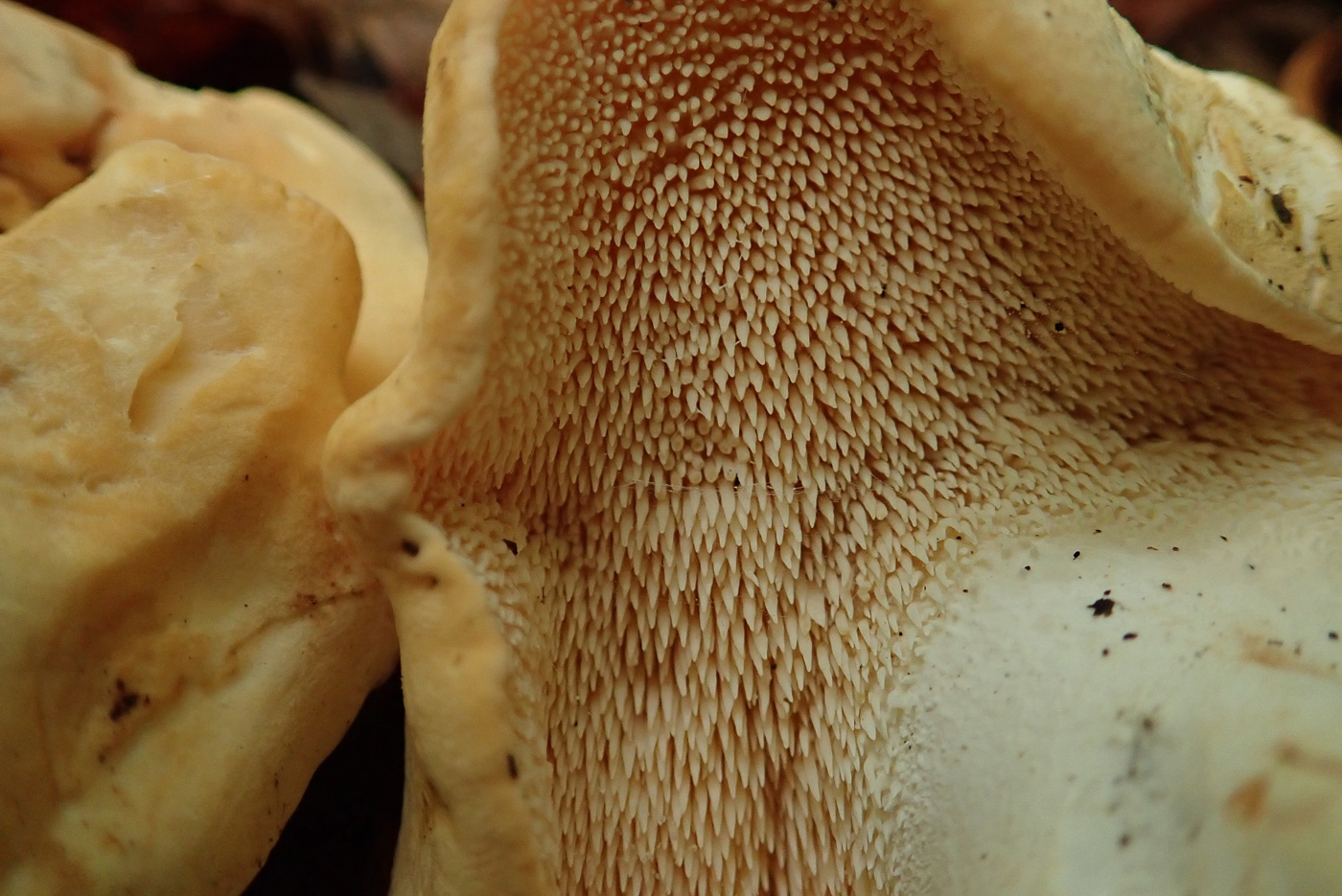 |
October 12th Hydnum repandum (Wood Hedgehog)
We have this species already on our list but just a singleton (dated Sept 06), so this nice collection is worth including again, found in Beech litter in Gussetts Wood by Paul Cullington. The caps were a good size, about 10 cms across, and though quite clearly darker than our previous specimen, still not dark or orange enough for the very similar H. rufescens.
|
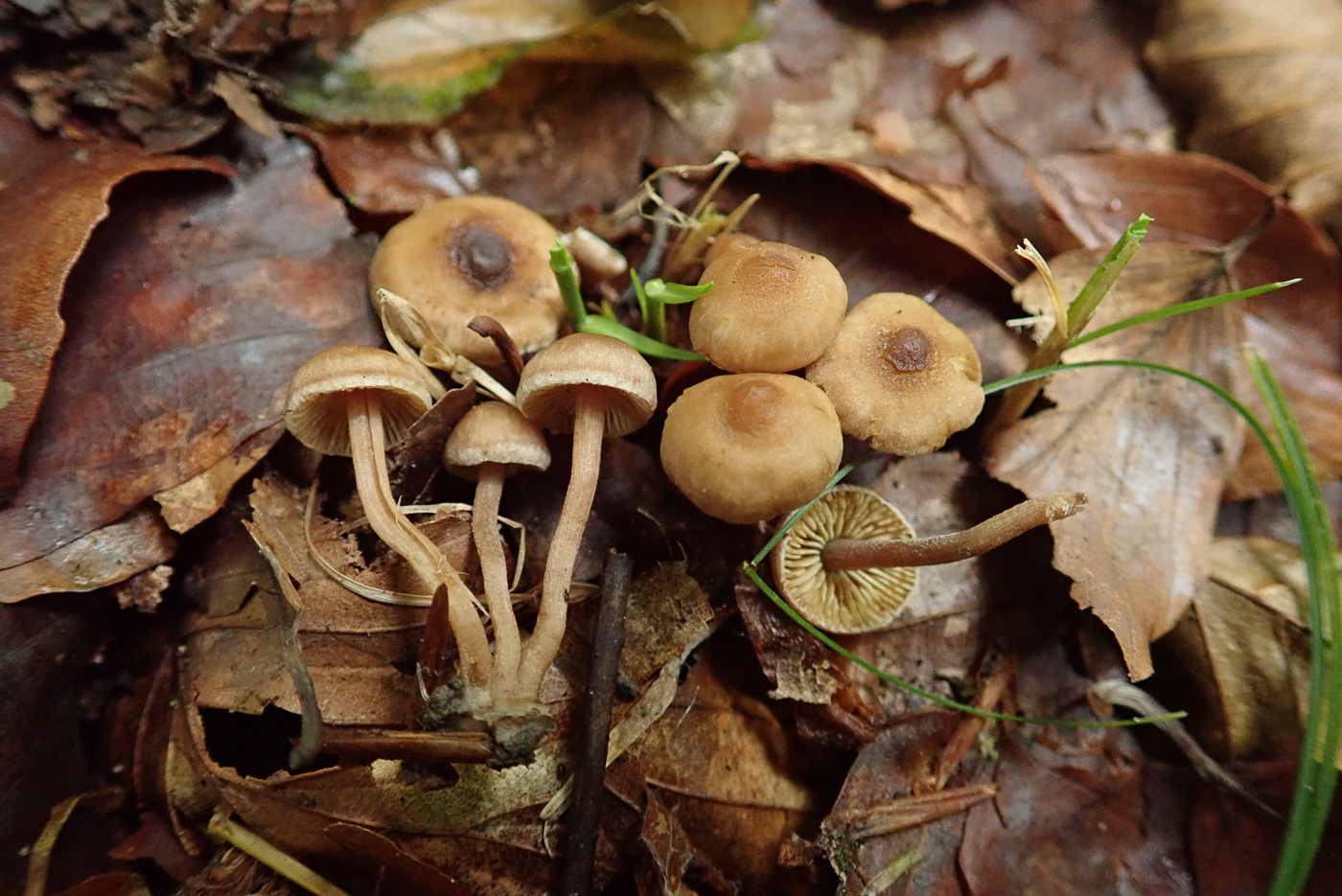 |
October 12th Inocybe petiginosa (Scurfy Fibrecap) 
Penny Cullington found this tiny Fibrecap under Beech in Gussetts Wood. One of the very smallest Fibrecaps, this definitely qualifies as an LBJ (little brown job) and is not typical of the genus having rather creamy yellowish gills and a roughened cap surface, the caps often less than 1.5 cms across and with a paler band around the edge. It is not until one sees the nobbly spores and very distinctive gill cells under a scope that the genus becomes clear.
|
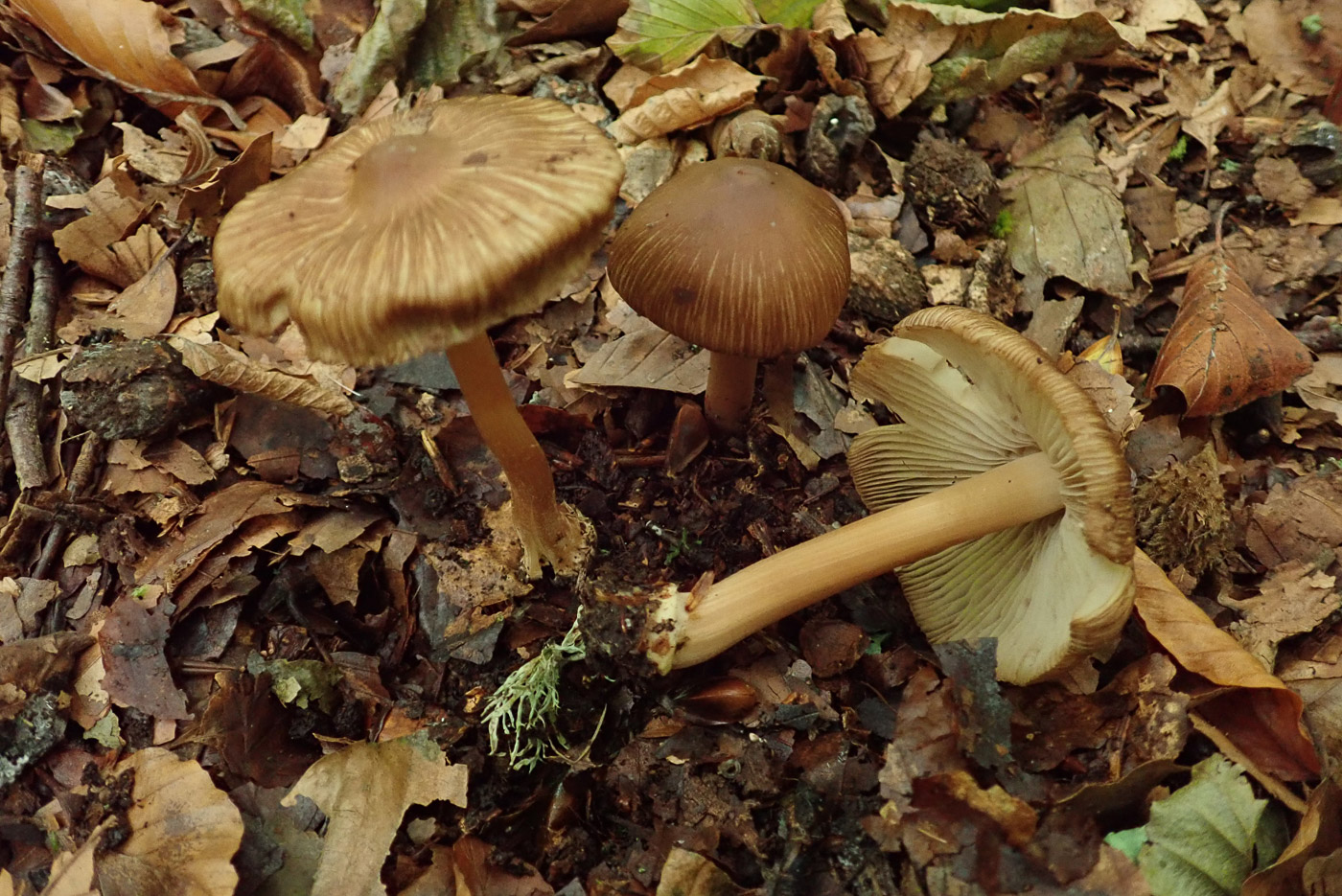 |
October 12th Inocybe asterospora (Star Fibrecap) 
This species was fruiting in large numbers under Beech in Gussetts Wood, found by Penny and Paul Cullington. It is one of the commoner and larger Fibrecaps and in fact recognisable in the field if you note the bright brown streaky fibrous caps, the beige gills and stems - concolorous with the cap - which have a distinct whitish bulb at the base. The LH fruit body here has the typical abruptly downturned margin often seen in the species. Nevertheless, one should always check for the amazing star-shaped spores to confirm your identification.
|
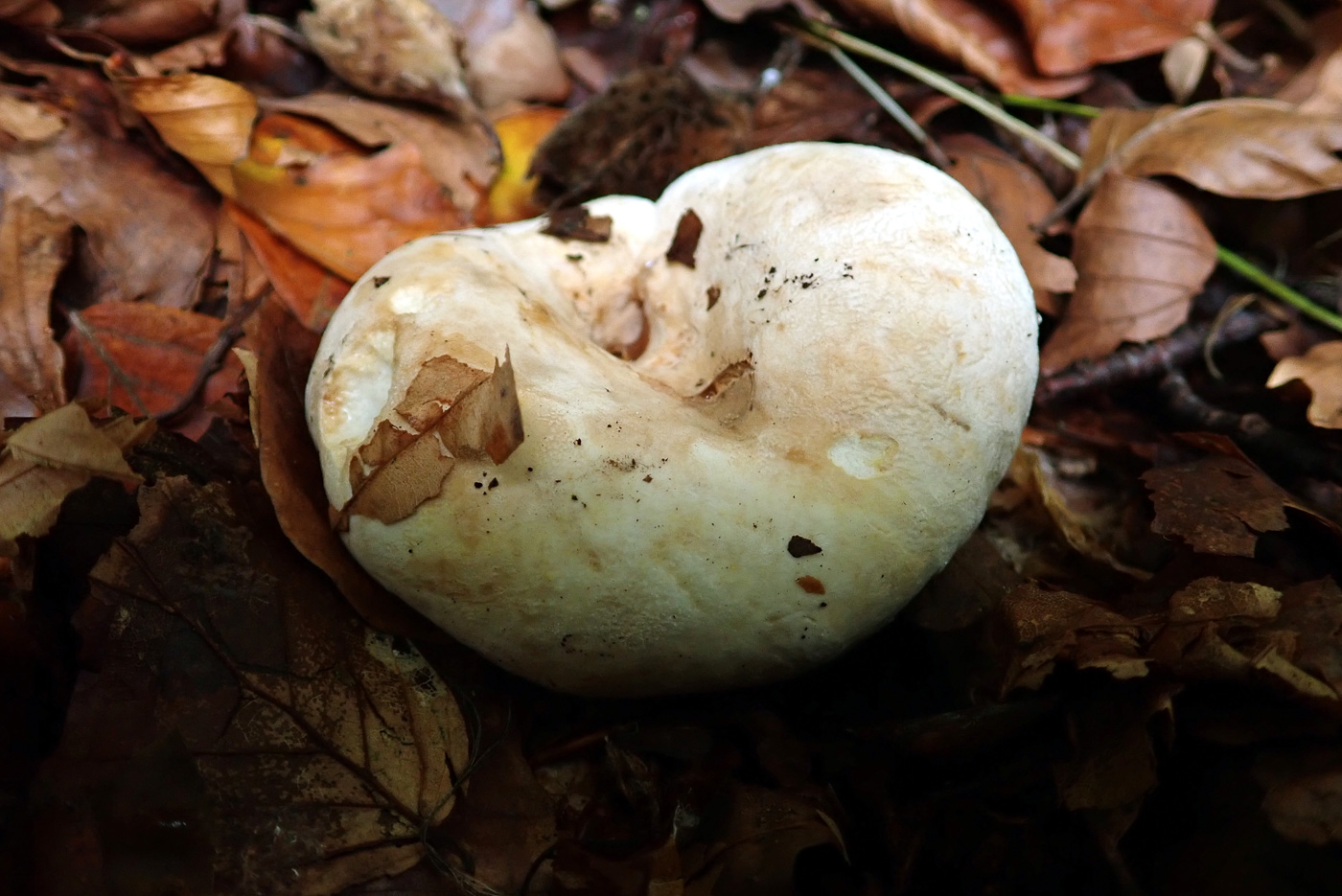
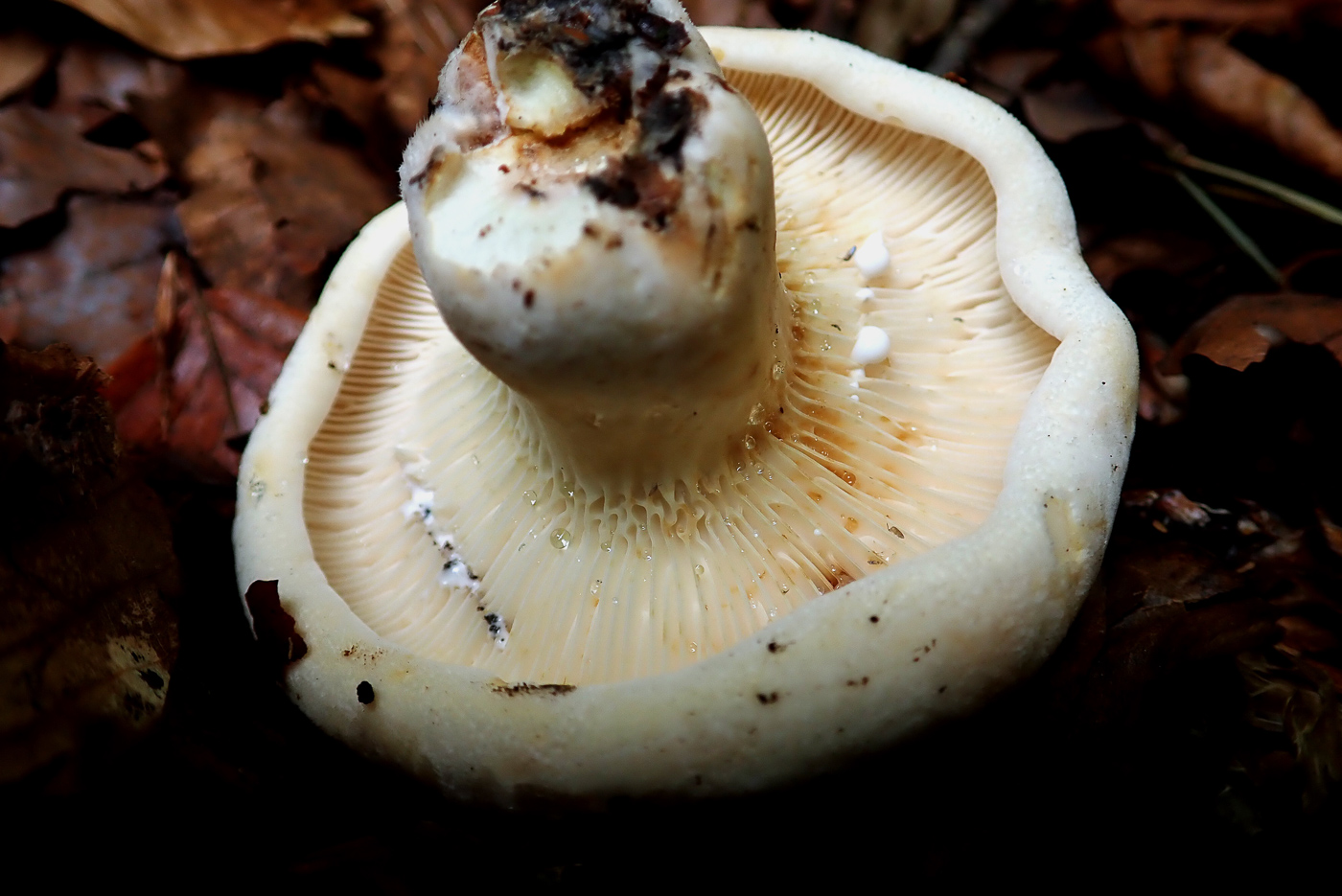 |
October 12th Lactifluus piperatus (Peppery Milkcap)
Only recently separated from the genus Lactarius, this species was found under Beech in Gussetts Wood by Penny Cullington. The five Lactifluus species are all very solid compared to most Milkcaps, in fact are very similar to the solid Brittlegills such as R. chloroides or R. delica. In fact you can't be sure in the field which genus you have till you damage the gills to test for milk. Today's species is the commonest of this group and has very crowded gills, a velvety cap surface and the milk is fiery hot to taste.
|

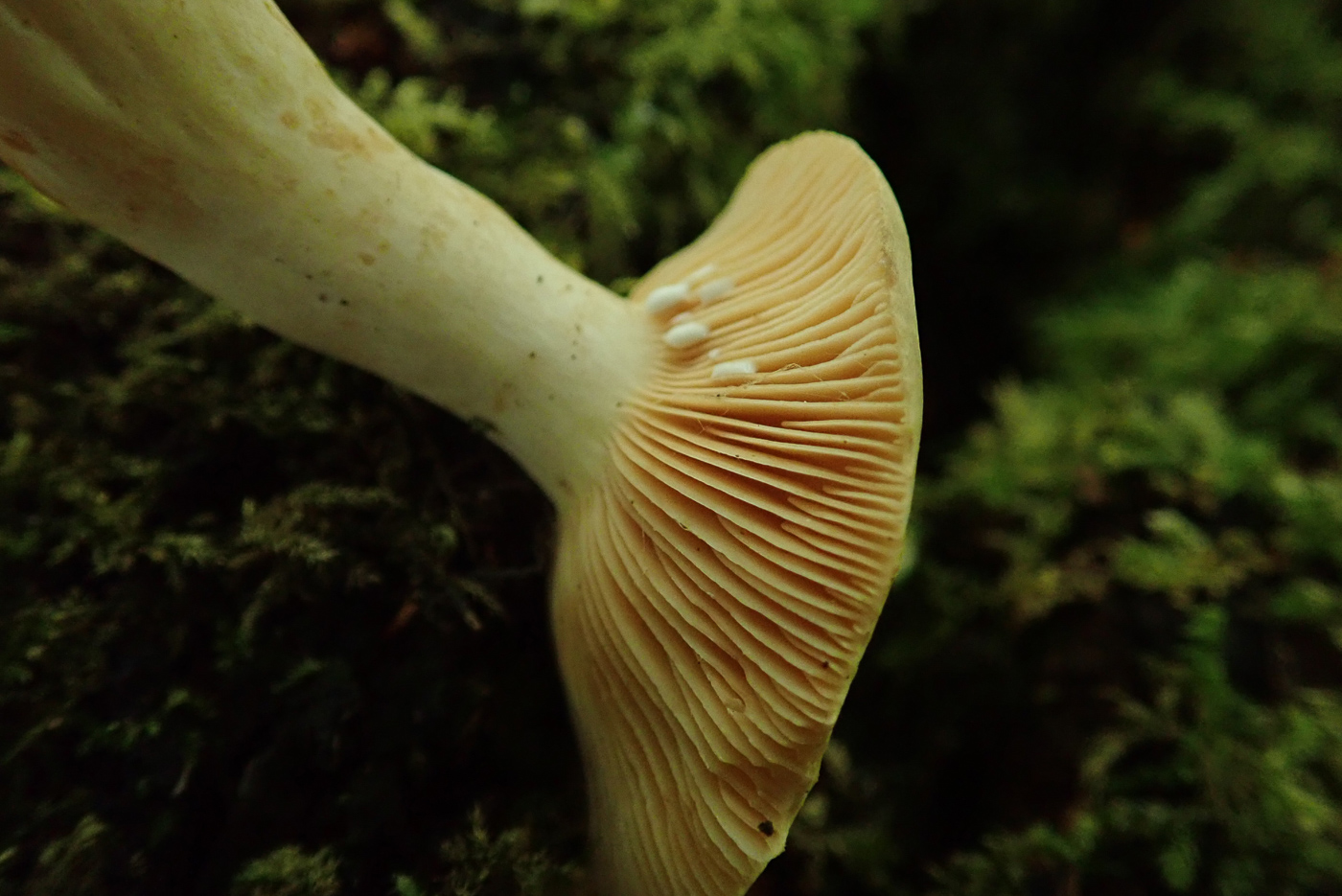
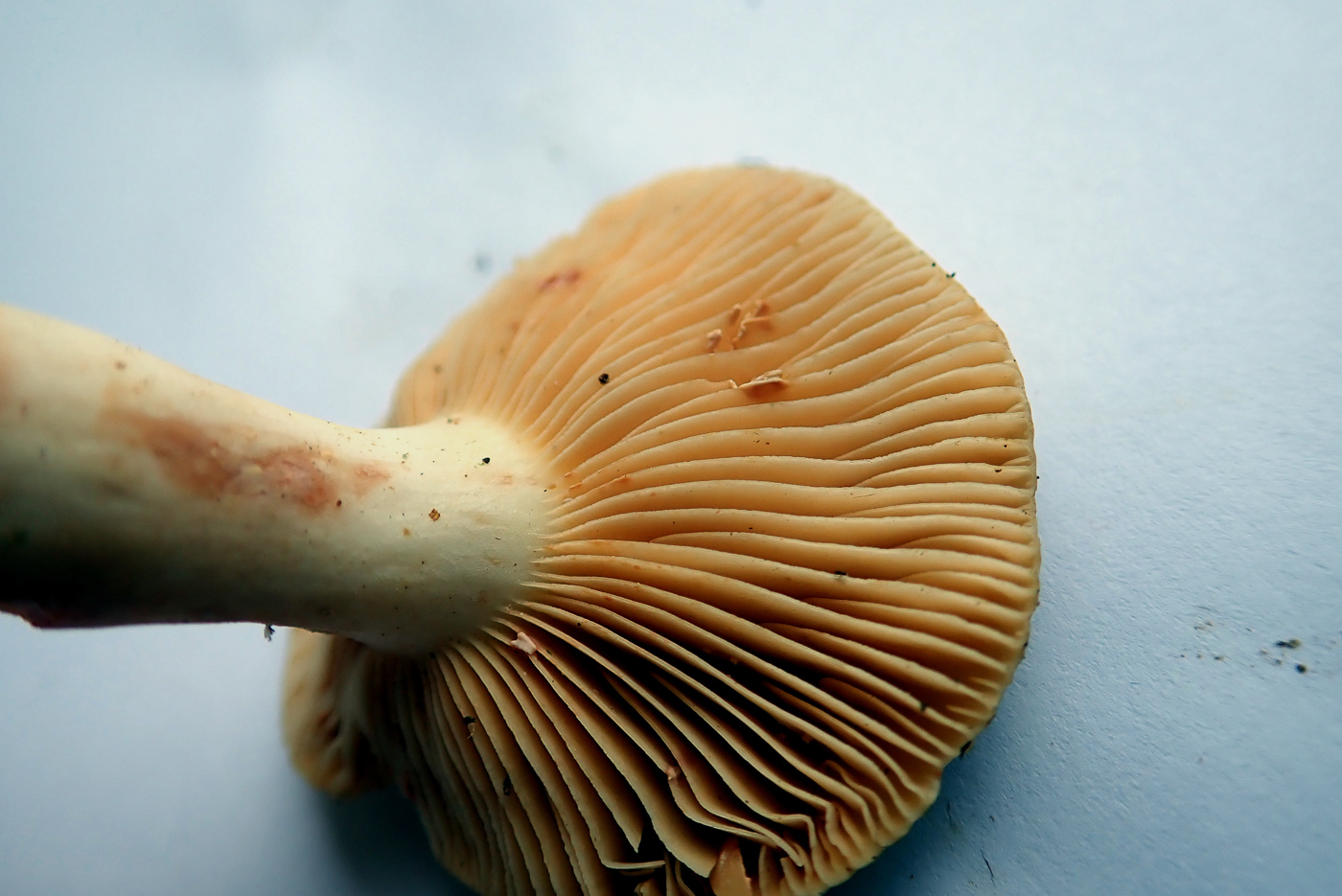 |
October 12th Lactarius azonites (a Milkcap with no common name)
Penny and Paul Cullington came across several fruit bodies of this unusual Milkcap under Oak and Beech in Gussetts Wood. Notable for its rather peachy orange gills, the milk as it dries turns pink, as does the stem flesh where damaged, though this takes 15 minutes or more so a fruit body needs to be contained and and an eye kept on it. (Photo 3 shows the dried pink milk on the gills and stem.) There are several Milkcaps which have milk which turns pink in this way and care is needed to tell them apart; it's best to check the spores ornamentation to confirm the determination  . This particular species favour Oak which was present nearby today. . This particular species favour Oak which was present nearby today.
|
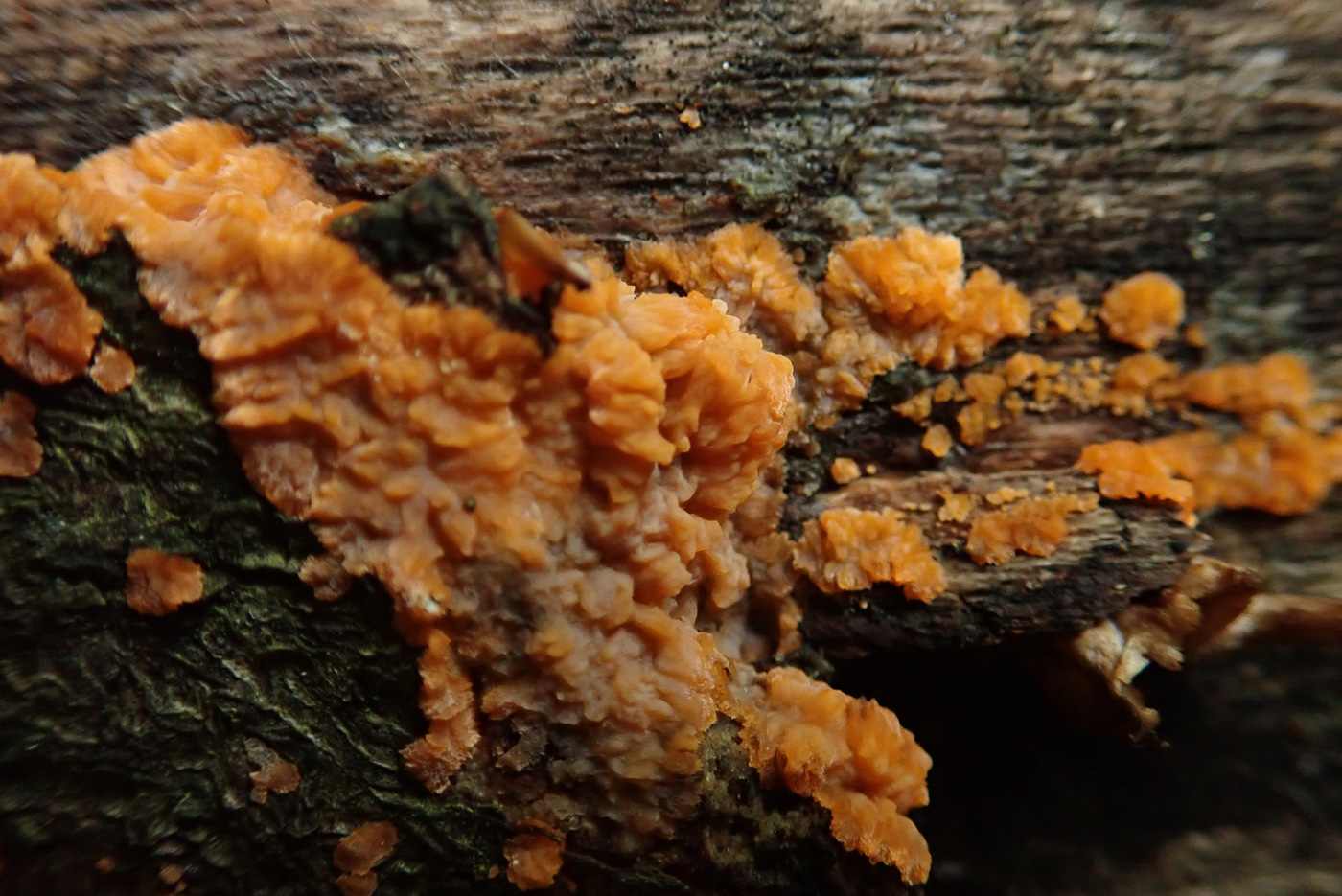
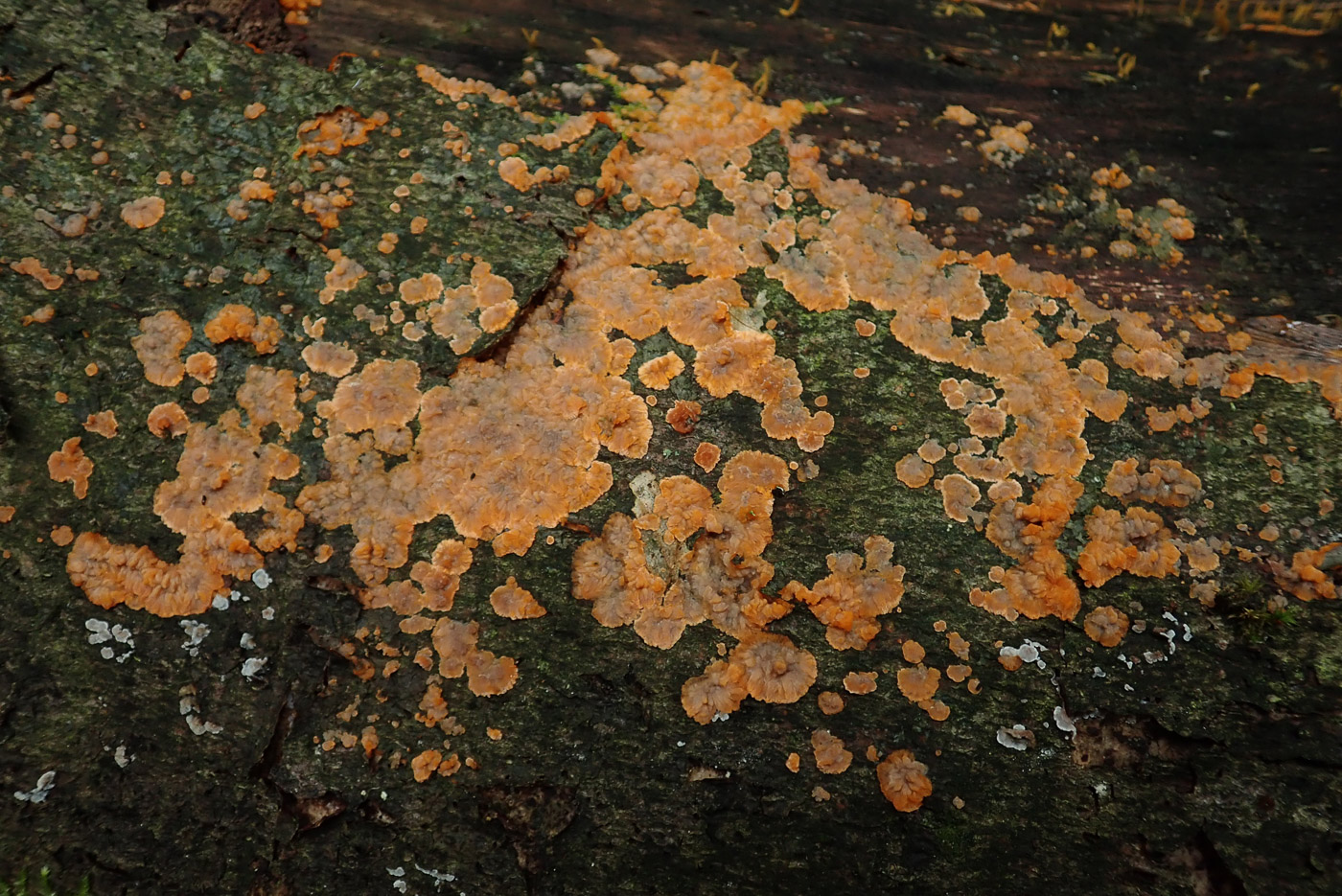 |
October 12th Phlebia radiata (Wrinkled Crust)
Penny Cullington found this large brightly coloured patch on a fallen Beech trunk in Gussetts Wood. This is a common fungus growing resupinate (flat) over bare wood and bark of Beech and other deciduous trees. When young (photo1) it is gelatinous and rubbery but becomes hardened and crusty as it matures (photo 2).
|
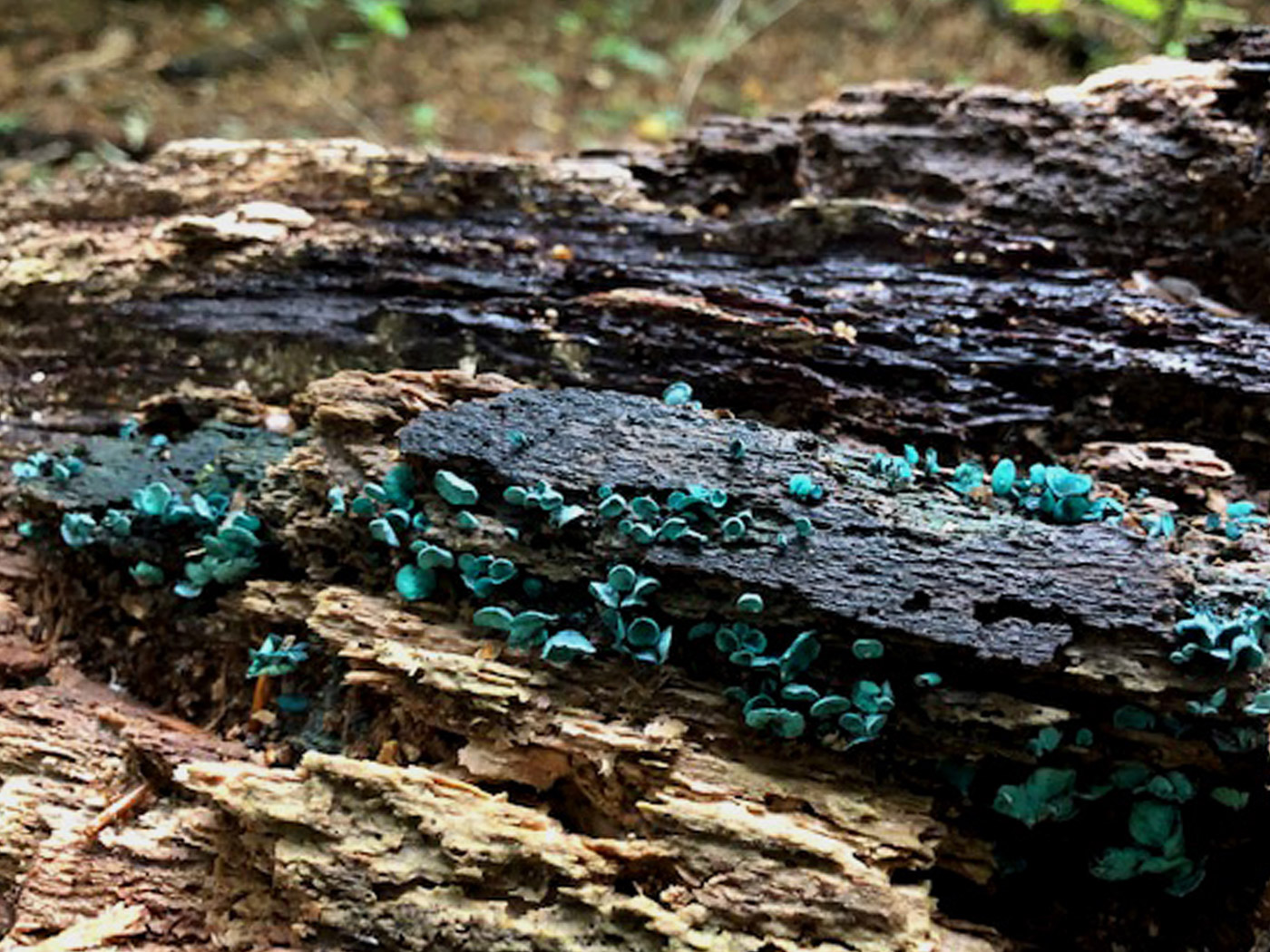 |
October 12th Chlorociboria aeruginascens (Green Elfcup)
This stunning collection of cups was found by Audrey McDade in Hodgemoor Woods on a rotting deciduous stick. This is quite a common Ascomycete but always a delight to find, each cup being less than 5 mm across. Once the cups have disintegrated having spread their spores, this same turquoise green colour can be seen colouring the wood thought its mycelium within, and it is this coloured wood which provided the green inlay used in antique furniture called Tunbridgeware.
|
October 11th 2020
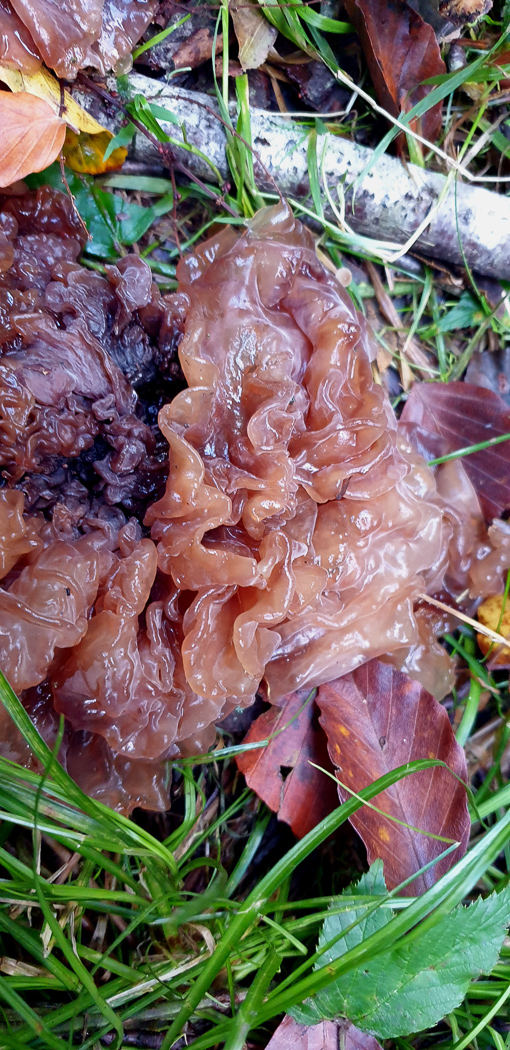 |
October 11th Tremella foliacea (Leafy Brain)
Justin Warhurst found this jelly fungus on wood in Penn Wood. Though not visible here, this would have been growing on another wood inhabiting fungus, probably the common Stereum hirsutum, which it is now known to parasitise. It is quite common and can get to about 10 cms and when young and much smaller could be possibly be confused with the Ascomycete Neobulgaria pura.
|
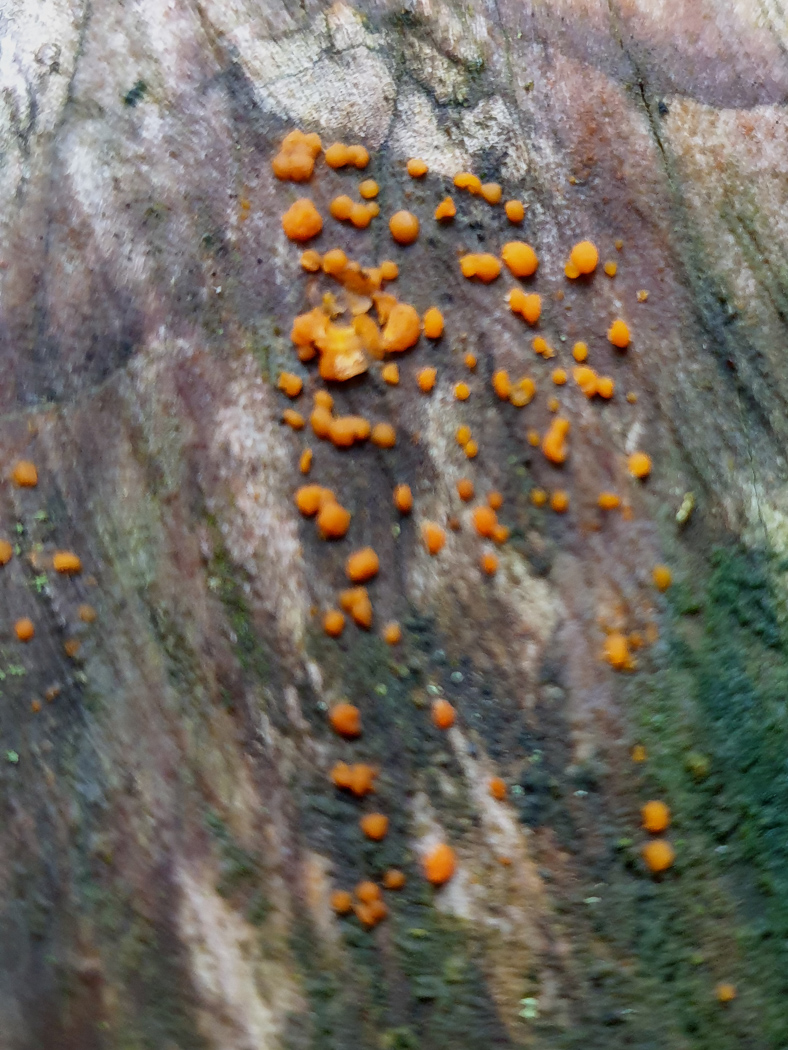 |
October 11th Dacrymyces stillatus (Common Jellydisc)
Jackie McKenzie Dodds noticed these tiny orange blobs on bare wood in Penn Wood. This is a very common species of jelly fungus and despite having the word 'disc' in the common name it is not an Ascomycete. It occurs on any wood which is sufficiently rotting and damp: sawn timber as well as fallen bare wood.
|
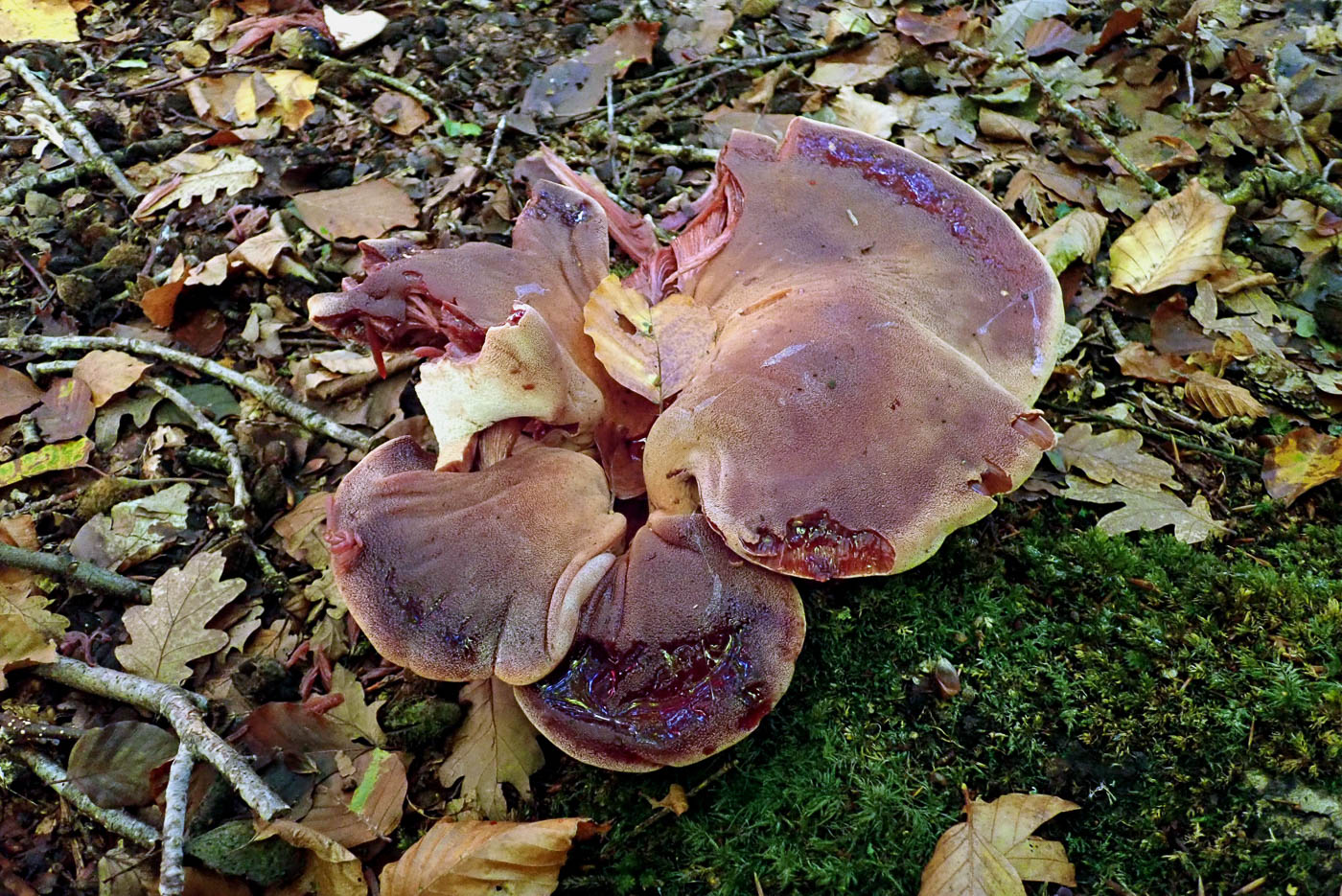 |
October 11th Fistulina hepatica (Beefsteak Fungus)
This magnificent specimen was growing on Oak roots at Pullingshill Wood, found by Penny Cullington. Though we already have good photos of the species (dated Sept 12th), the recent rain had made today's example almost as macabre as it gets and it certainly deserves a place in our list in its own right! It was about 1 ft across and if you hadn't known such a fungal species existed you'd probably have thought some poor creature had come to a very sticky end! No explanation is needed as to why it was given its apt common name.
|
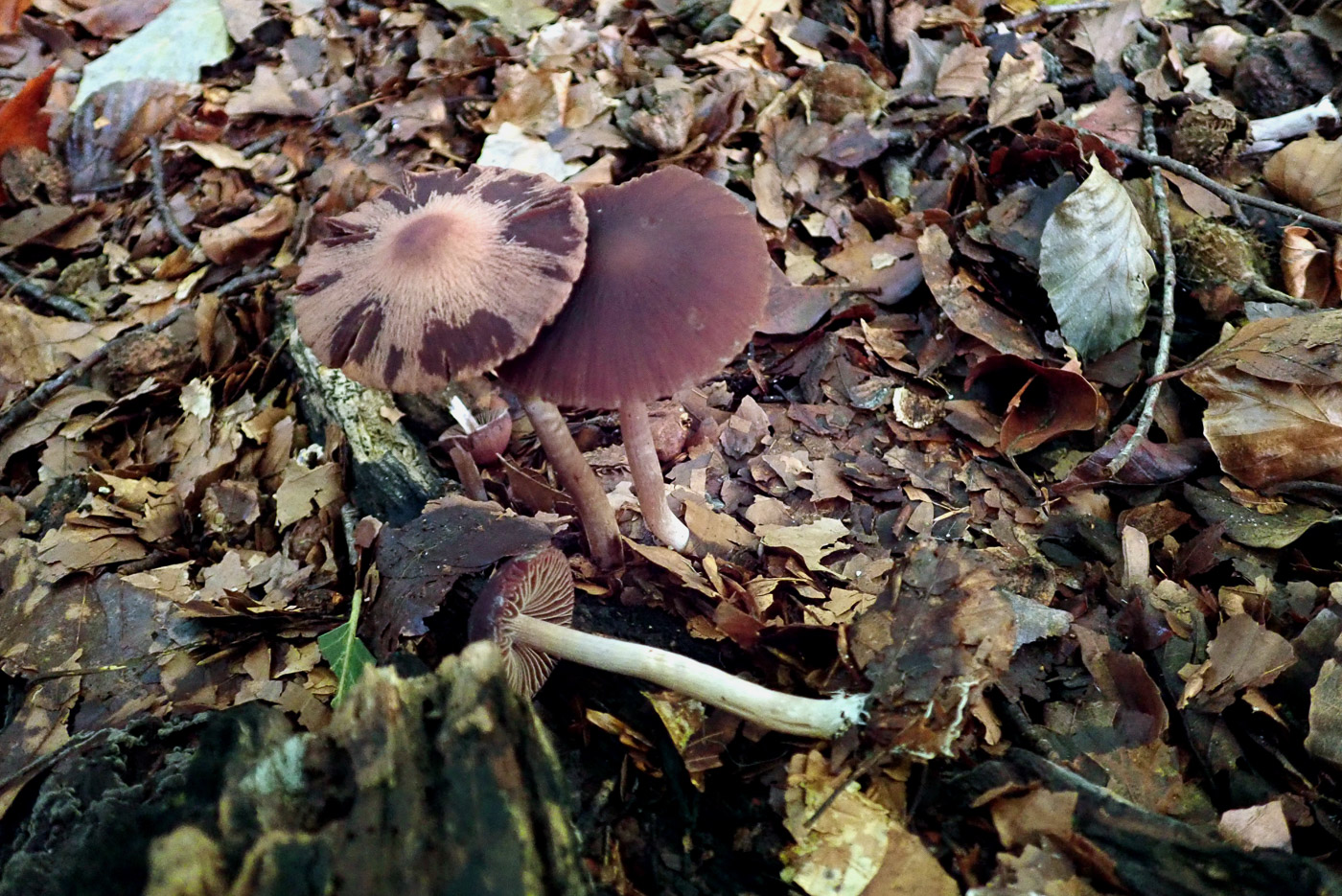 |
October 11th Psathyrella bipellis (a Brittlestem with no common name) 
Penny Cullington was delighted to see this attractive and relatively rare Brittlegill in Beech litter in Pullingshill Wood - a new site for it. Brittlegills are generally not the most appealing or beautiful species but this one is definitely the exception and also recognisable in the field once you get to know it. The rich purple brown cap colour is striking and unusual not just within the genus but generally amongst mushrooms, though it is markedly hygrophanous (fades as it dries out), seen here in the higher of the two caps and leaving in this particular case rather a bizarre two-tone effect. The species also has peculiar smell said to be of peppermint or unpleasant like urine!
|
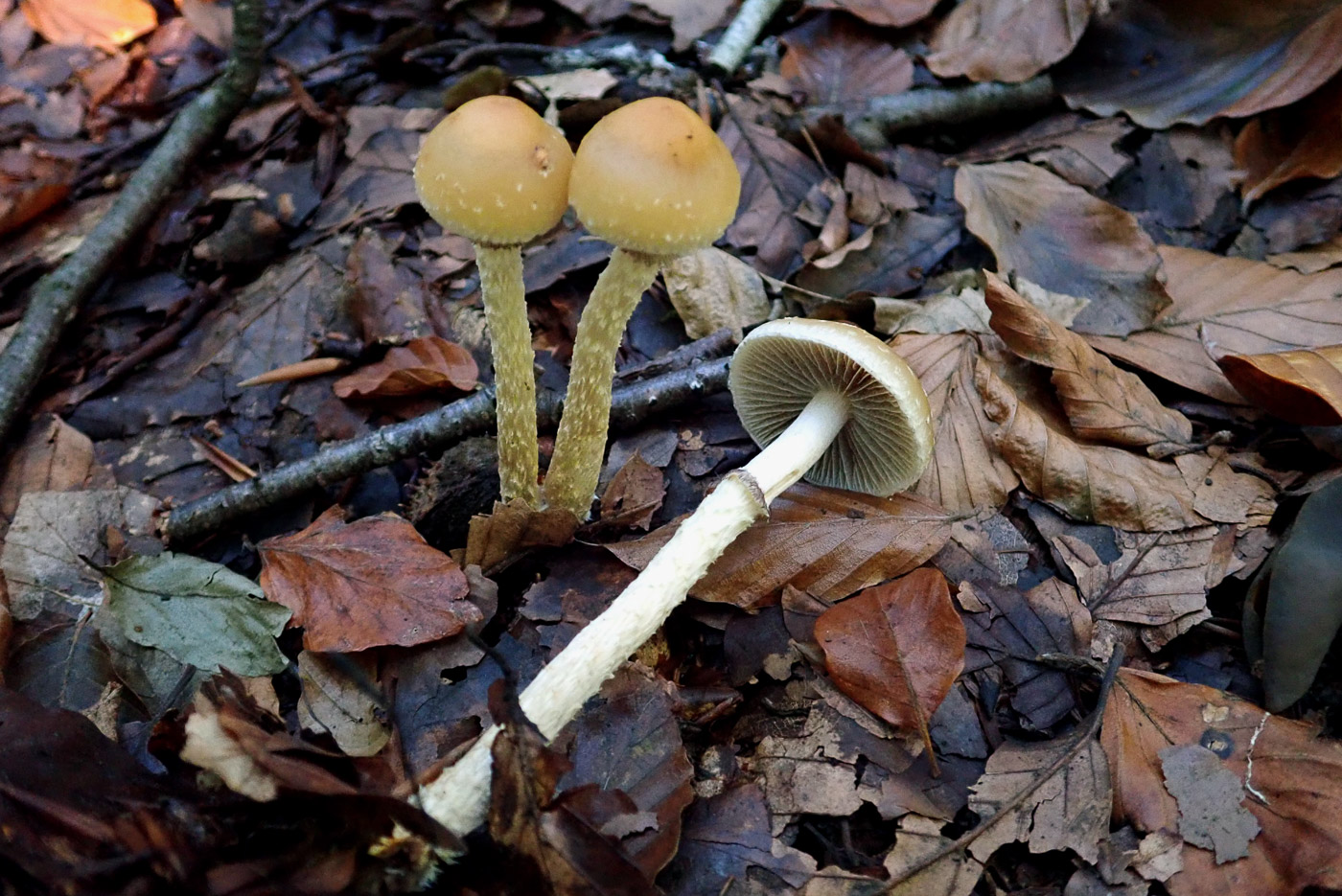
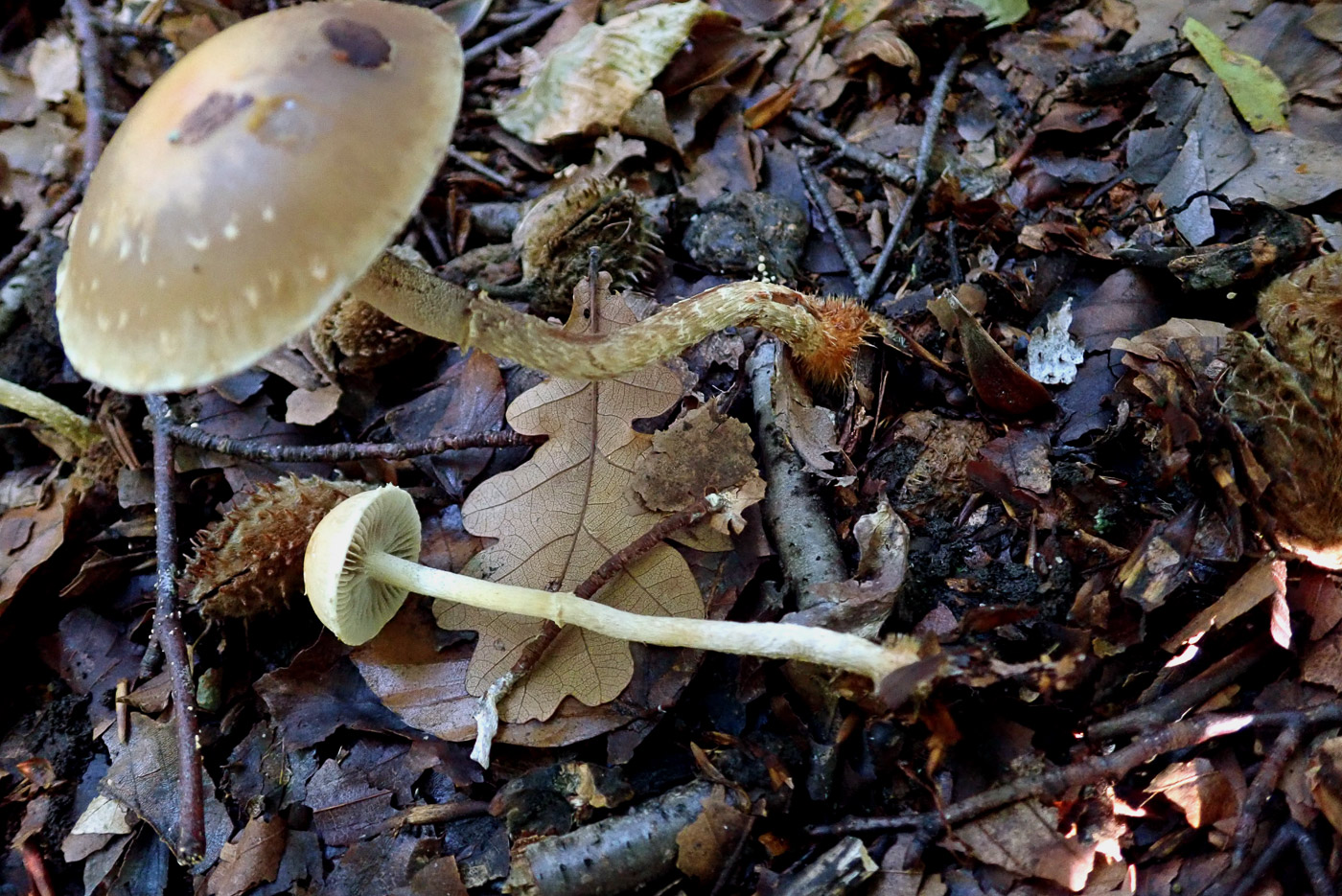
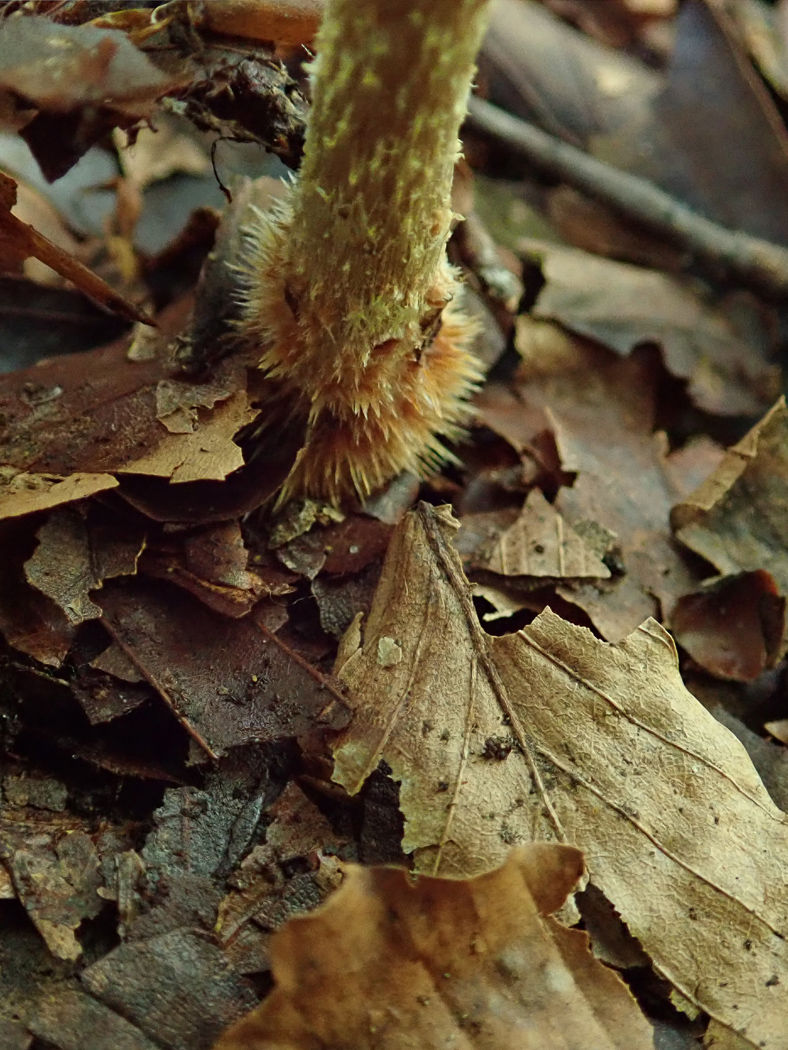 |
October 11th Stropharia ( / Leratiomyces) squamosa (Slender Roundhead)
This species was found in two different locations in Beech litter in Pullingshill Wood by Penny Cullington. Not common but occasional, the rather nondescript cap colour of the species is possibly the least interesting aspect of the fungus, but note the white flecks of veil on the outer cap and the tall stem in proportion to the cap size (which is no more than 3 to 4 cm across) The stem has a ring which gradually becomes black as the dark spores drop onto it, and below this there are belts of flocculose white veil (seen best in the larger specimen in Photo 2) and at the stem base it becomes orange with fine mycelial hairs (seen in Photo 3).
|
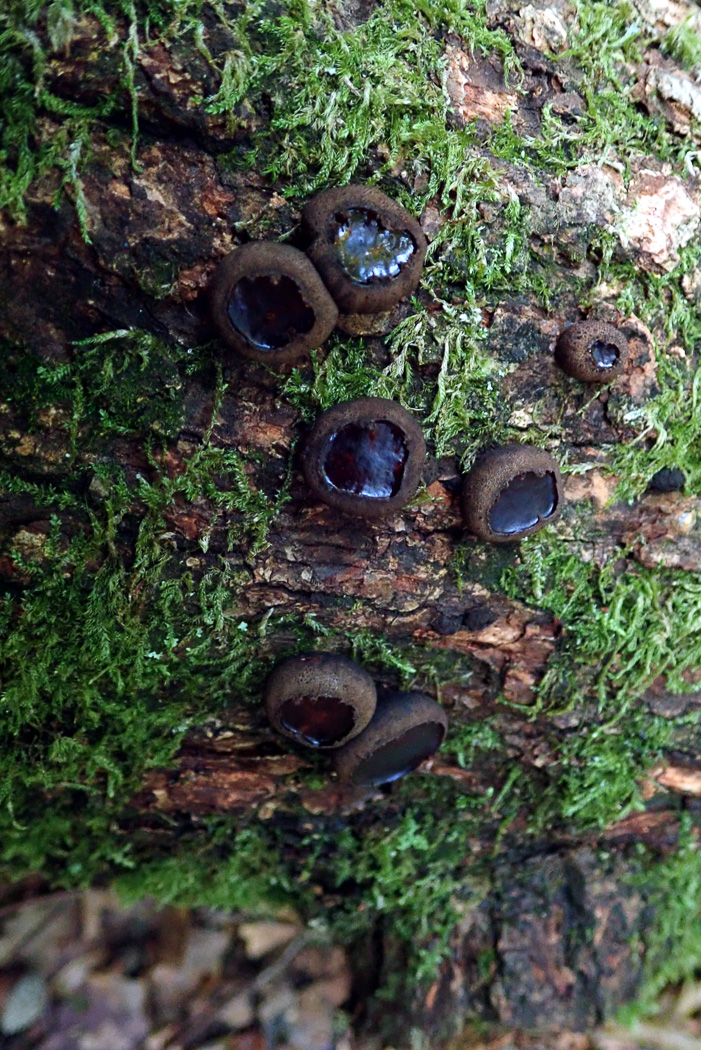
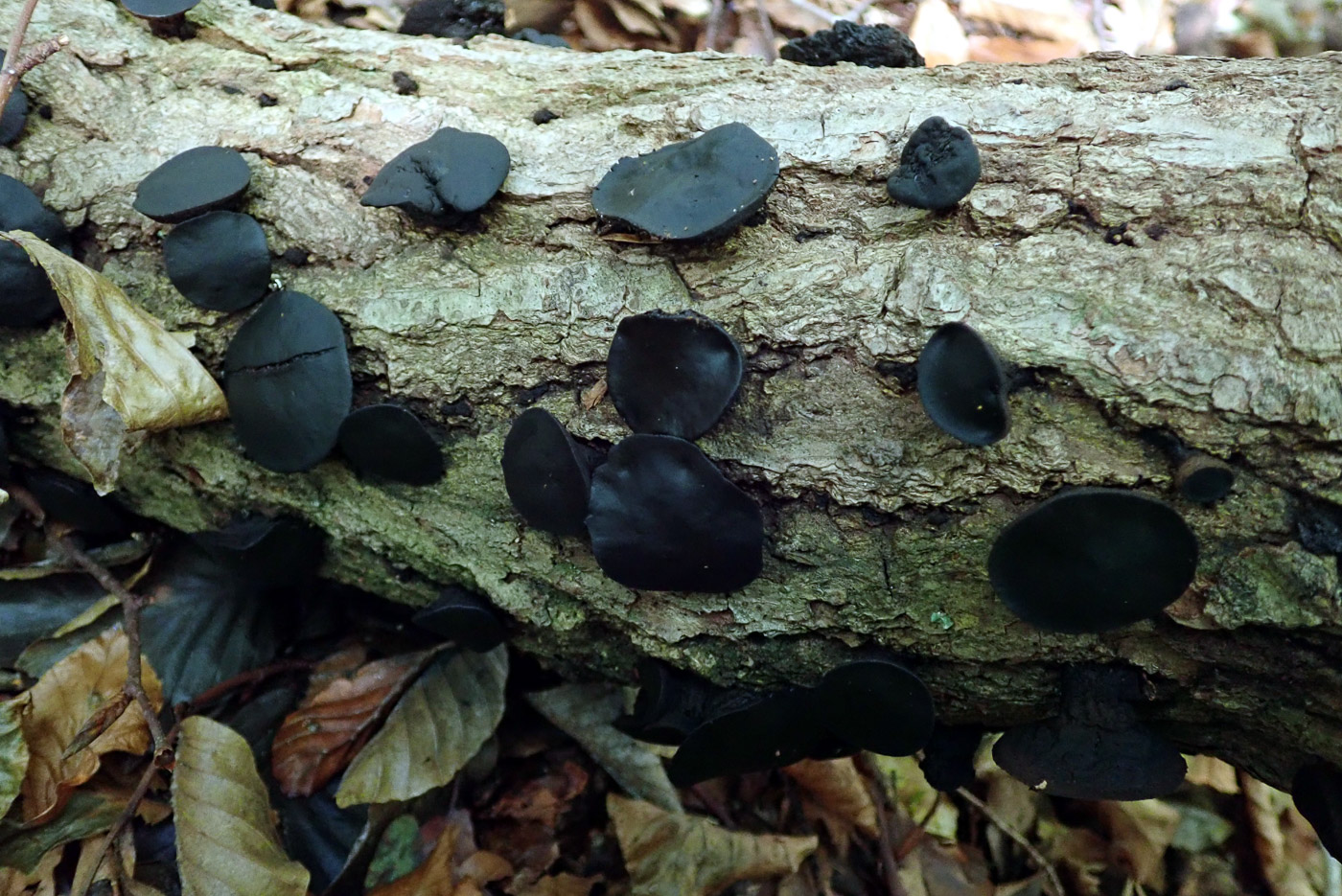 |
October 11th Bulgaria inquinans (Bachelor's Buttons / Black Bulgar)
This quite common Ascomycete was fruiting in good numbers on fallen Oak in Pullingshill Wood, found by Penny Cullington. Photo 1 shows young fruit bodies, not yet fully expanded, often with a reddish tinge and with the rough outer surface visible. Photo 2 shows mature black fruit bodies which are more or less flat discs with a short stem. This species is easily confused with a species of Exidea, also black and quite gelatinous (though not an Ascomycete). To check you have today's species, rub your finger over the black surface and it will be stained black by the spores. If it doesn't do so then you have something different!
|
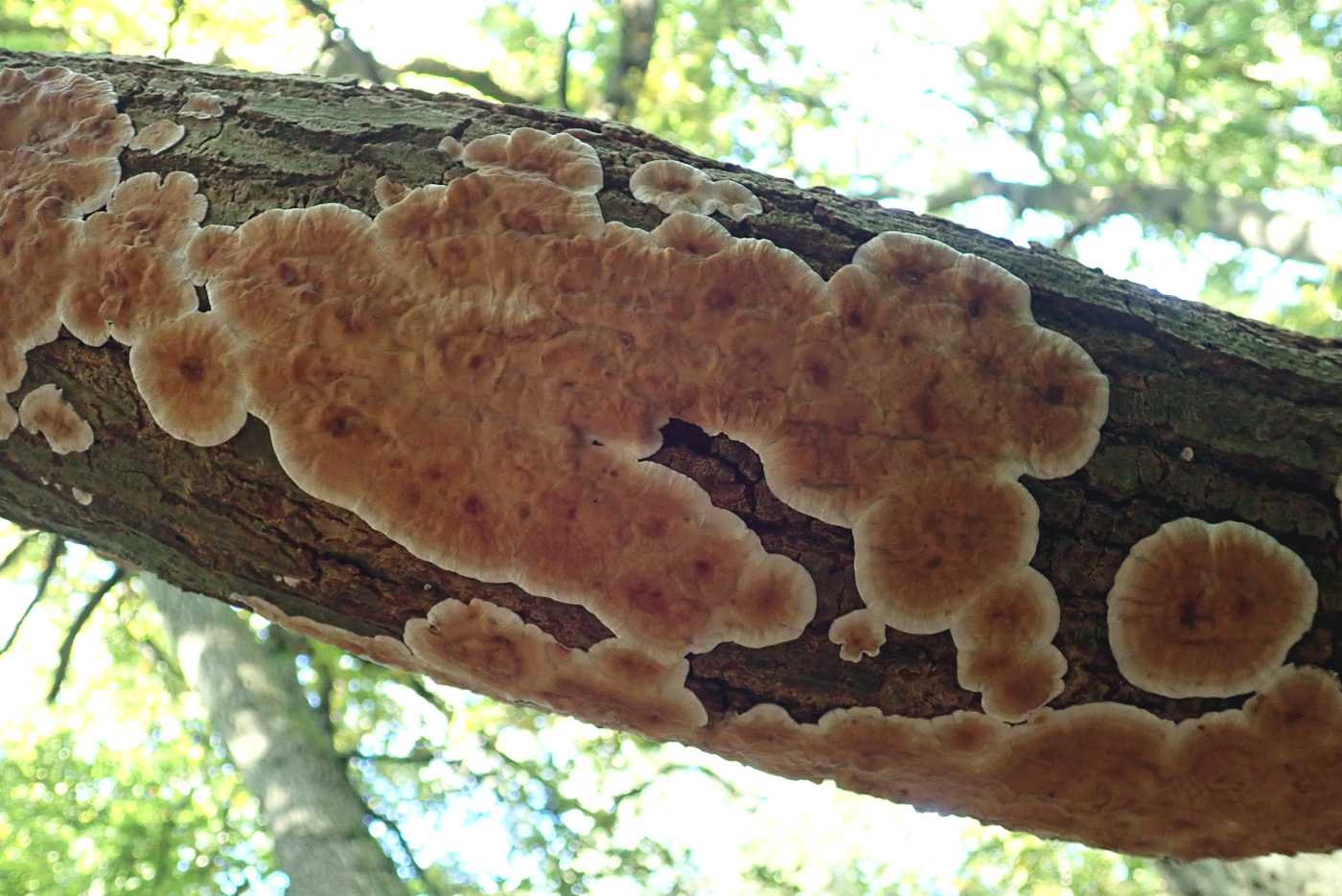
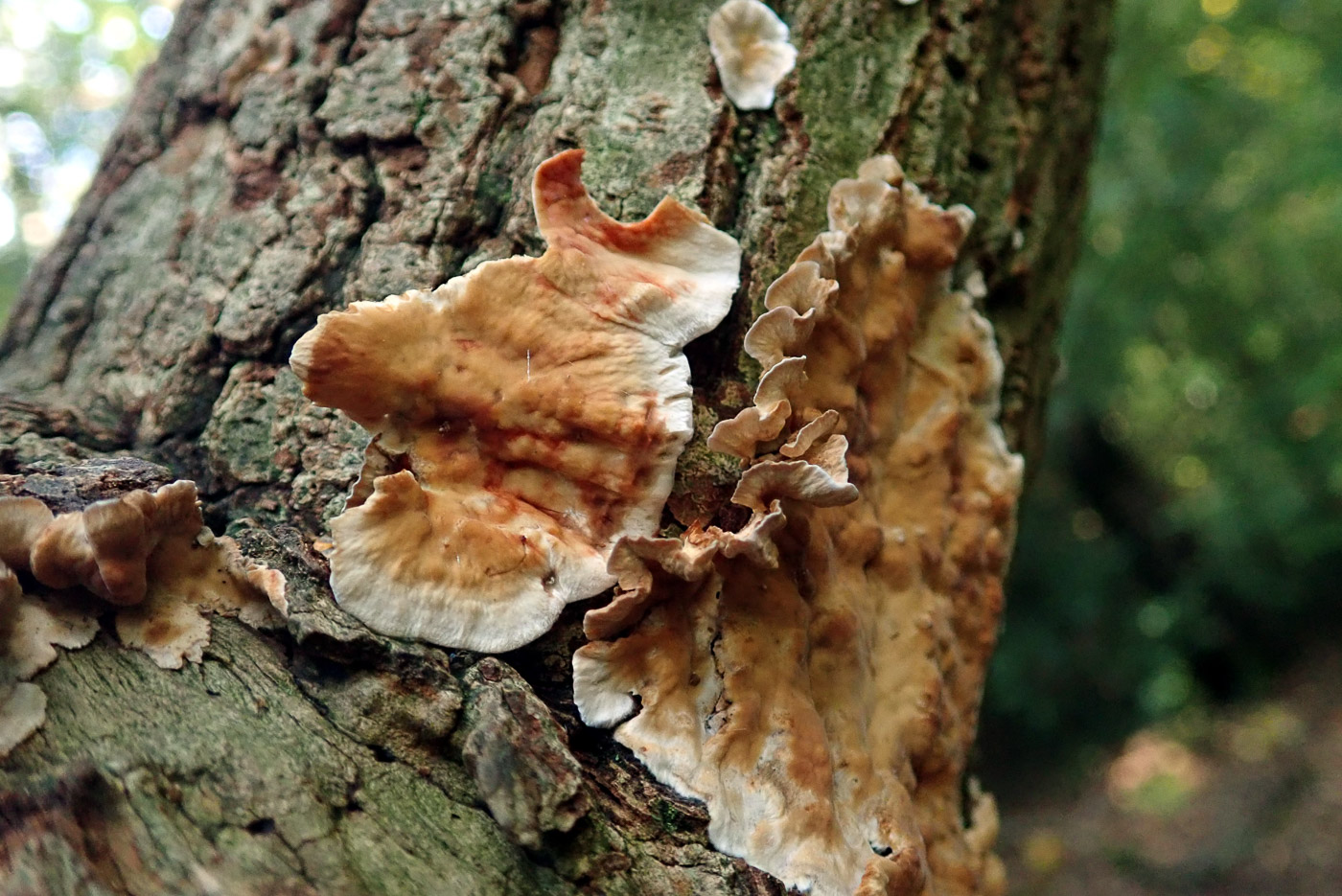
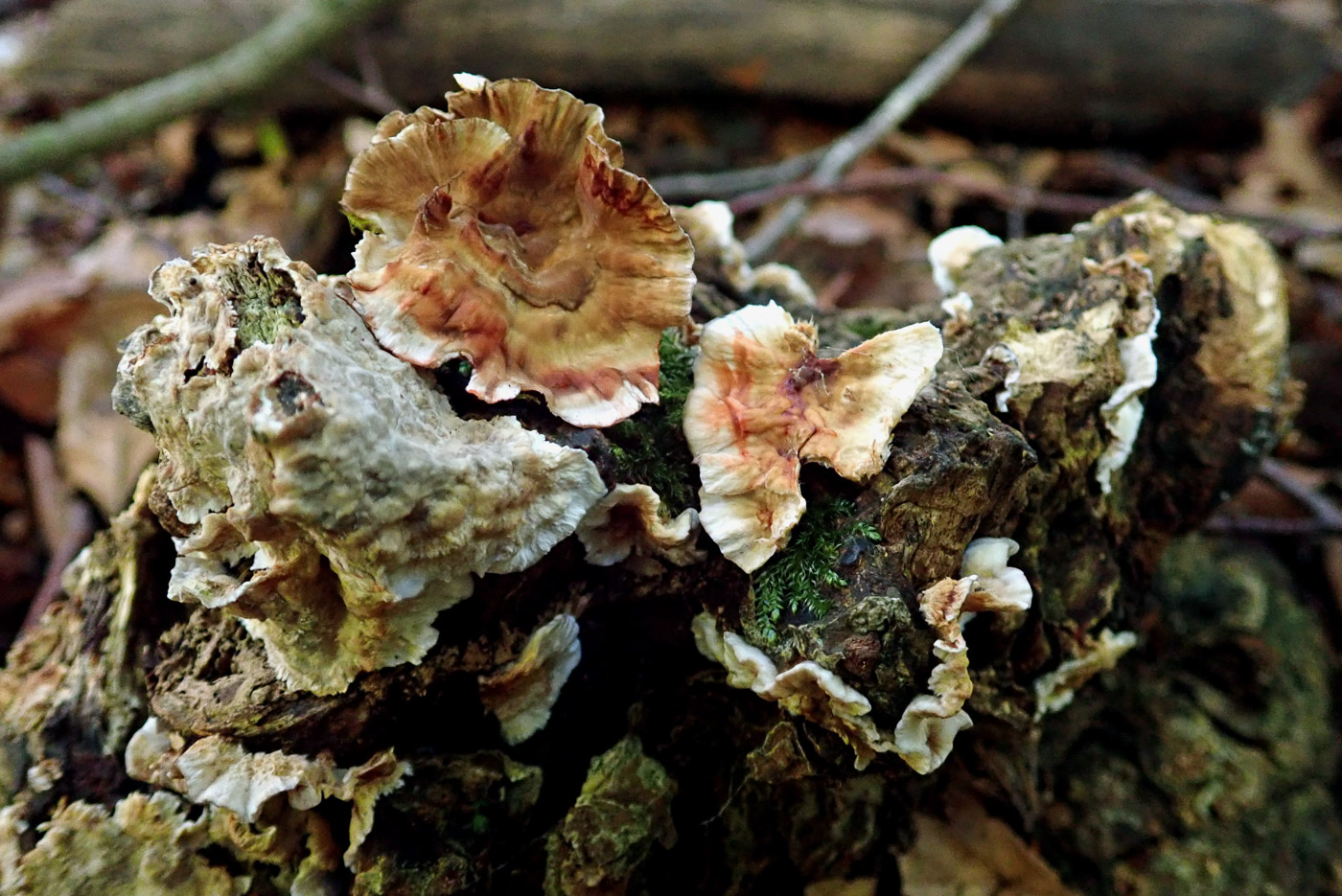 |
October 11th Stereum gausapatum (Bleeding Oak Crust)
This fine colony of Stereum was fruiting on standing Oak in Pullingshill Wood, found by Penny Cullington. The white rim and dark ochre bumpy centre is characteristic and it tends to grow resupinate (flat) rather than forming brackets like S. hirsutum. This is the rarest of the three resupinate Stereum species (which all turn red when damaged) and is only found on Oak, so if you find a similar species on conifer it will be S. sanguinolentum and on some other deciduous tree it will be S. rugosum.
|
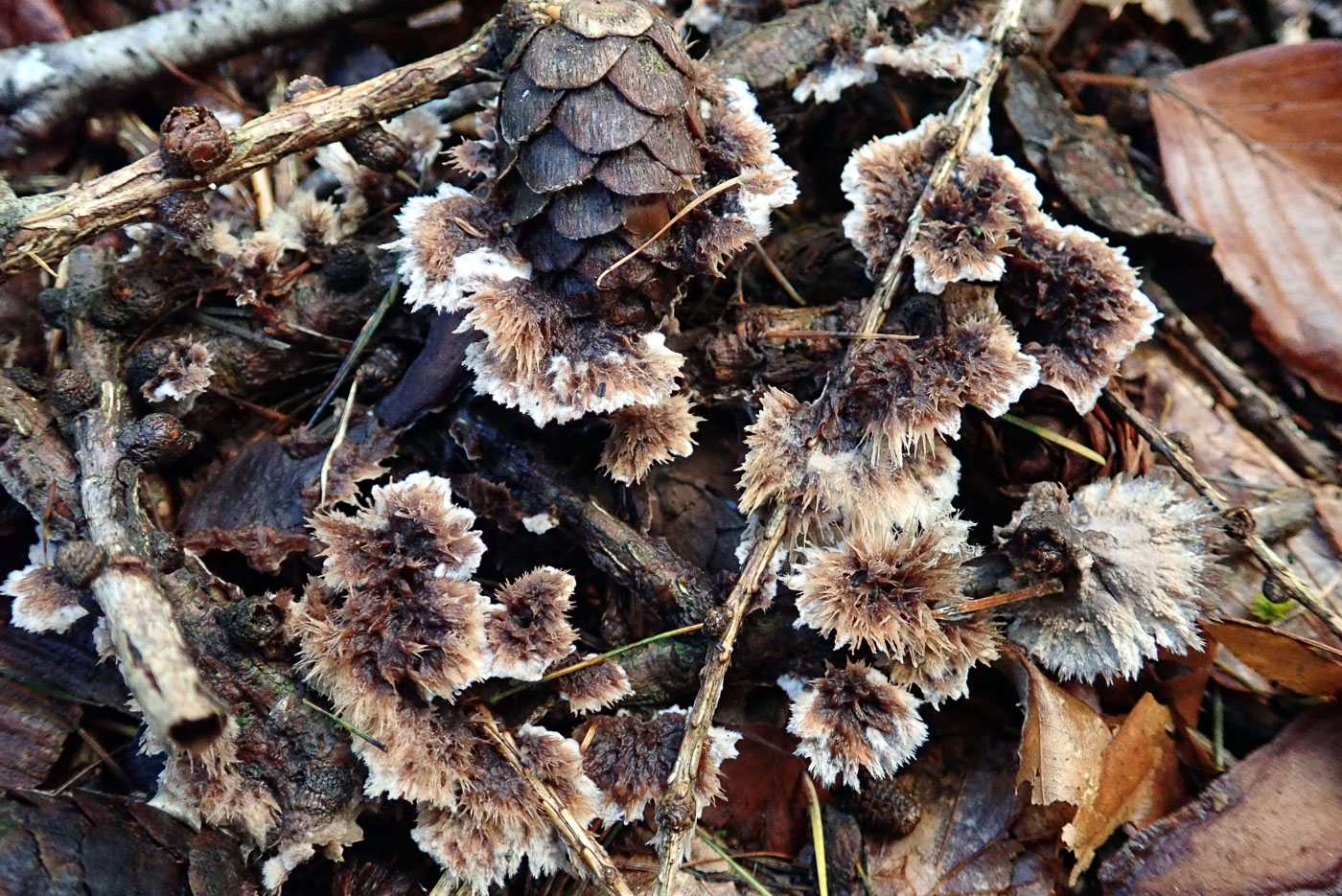 |
October 11th Thelephora terrestris (Earthfan)
This unusual but not uncommon species was found by Penny Cullington in Pullingshill Wood in woody conifer litter. It tends to occur in heathland or sandy soils with conifer, so it was a bit of a surprise to come across it in typical Chiltern Beech woodland though it was in an area with Larch. The fan in the far right bottom corner of the photo shows the underside which is almost whitish and each piece of fan was about 2-3 cms across.
|
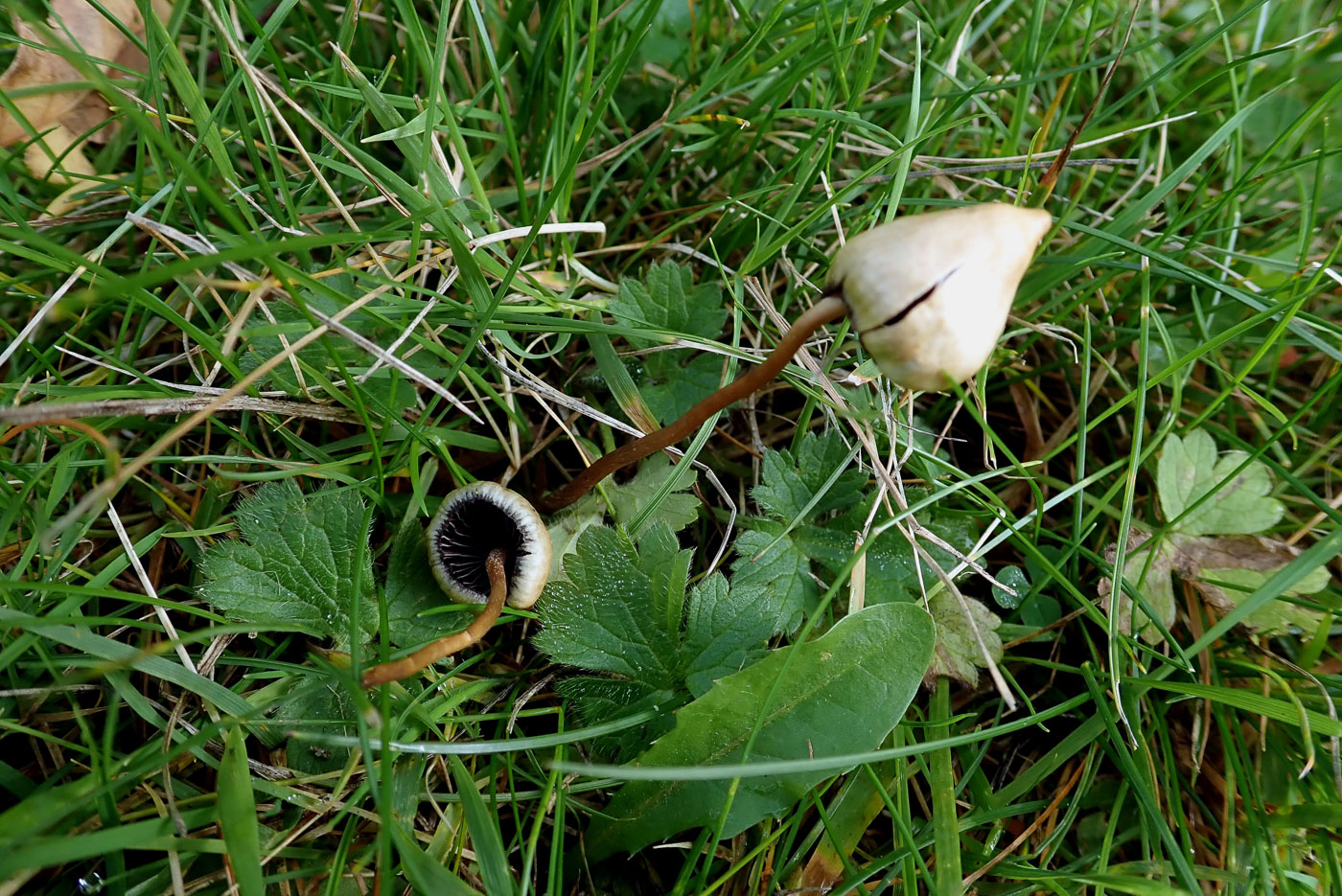
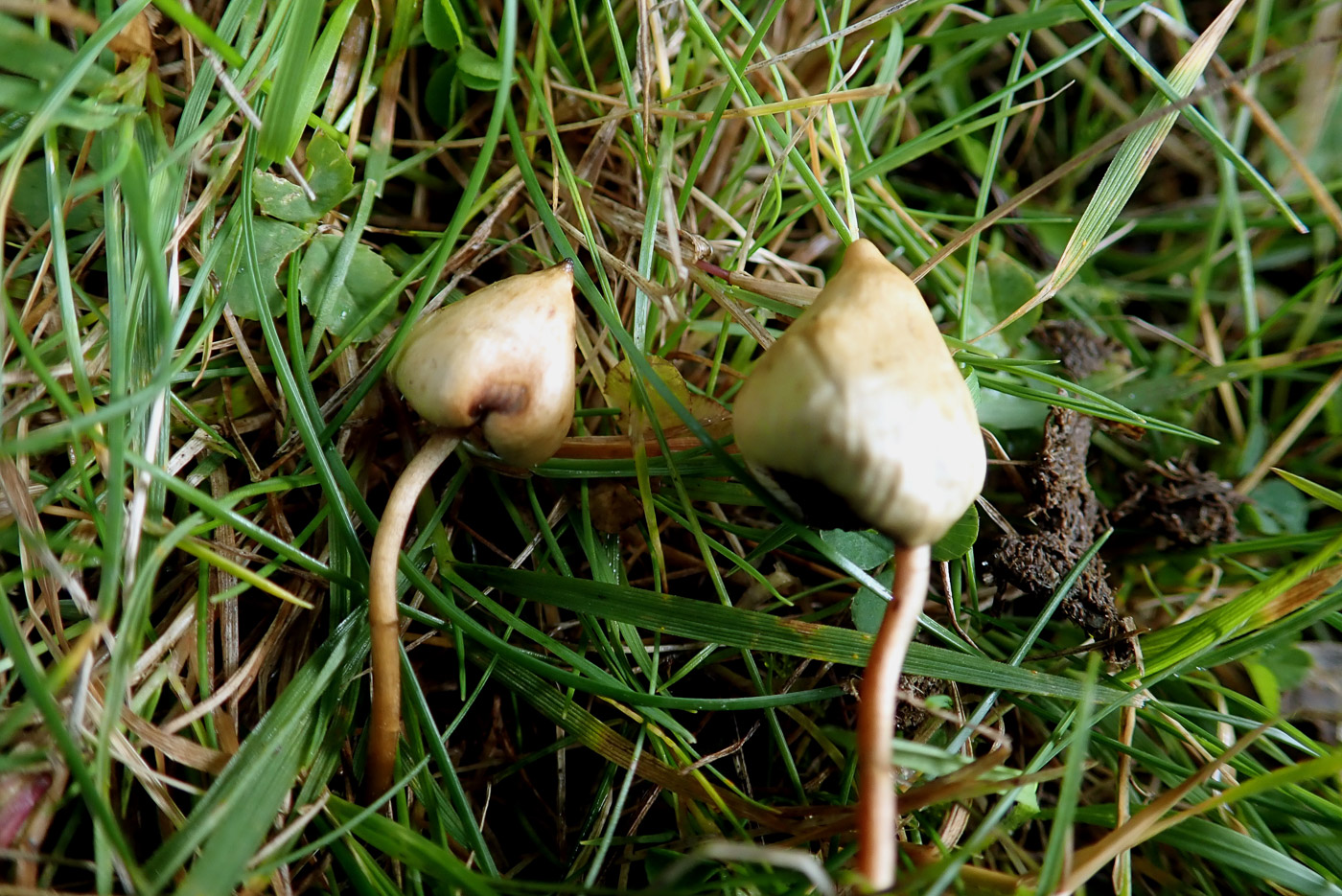 |
October 11th Psilocybe semilanceata (Magic Mushroom / Liberty Cap)
Penny Cullington came across just two specimens of this little mushroom with a big reputation (!) in grass at a site somewhere in the county! This species contains Psilocybin and is now designated as a Class A drug with serious penalties in place for its possession. Recognised by its distinctive acutely conical cap shape with a 'nipple' on the top, it is not uncommon in grassland habitats along with many other quite similar LBJs (Little Brown Jobs). Note the very dark gills and smooth rusty brown stem.
|
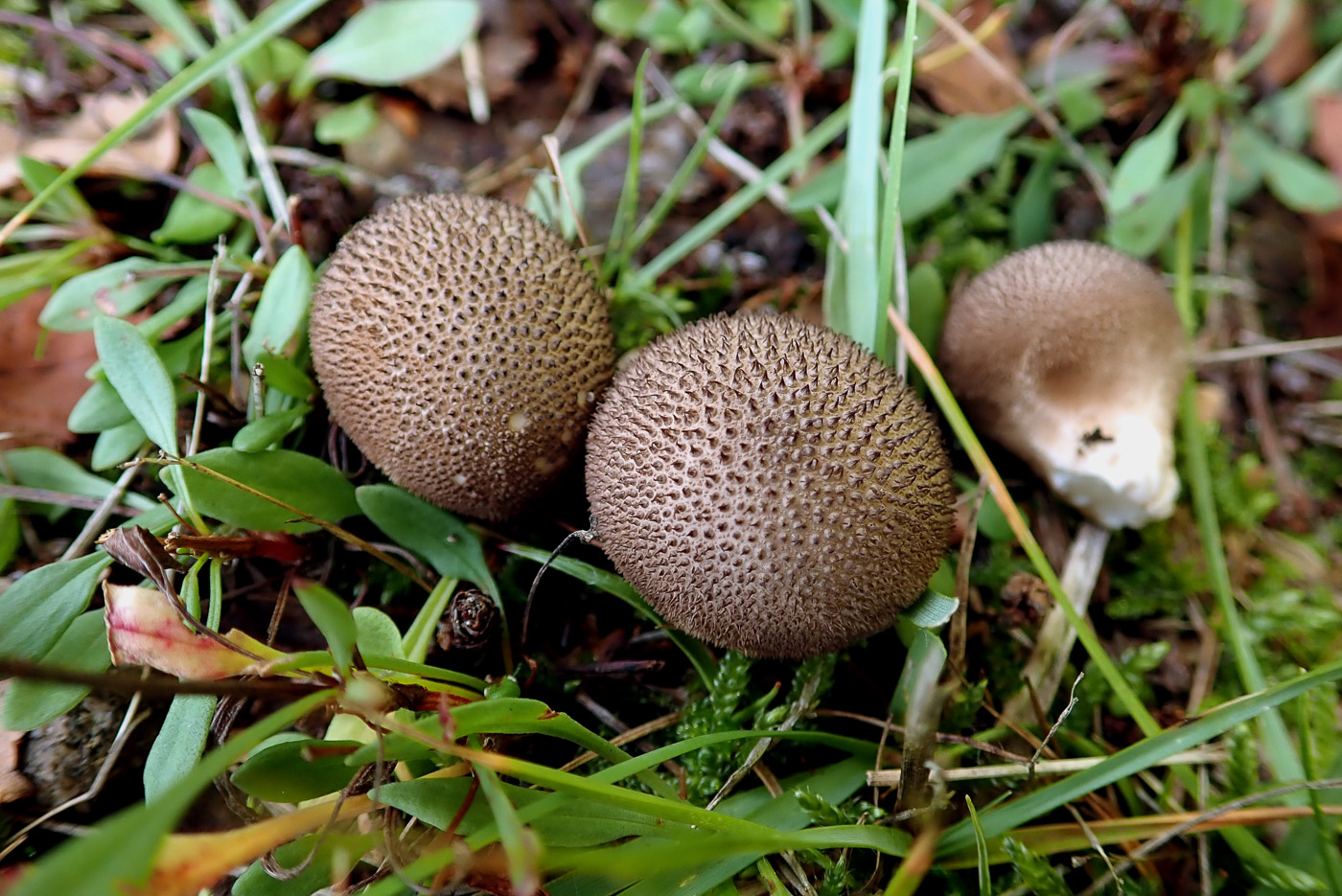
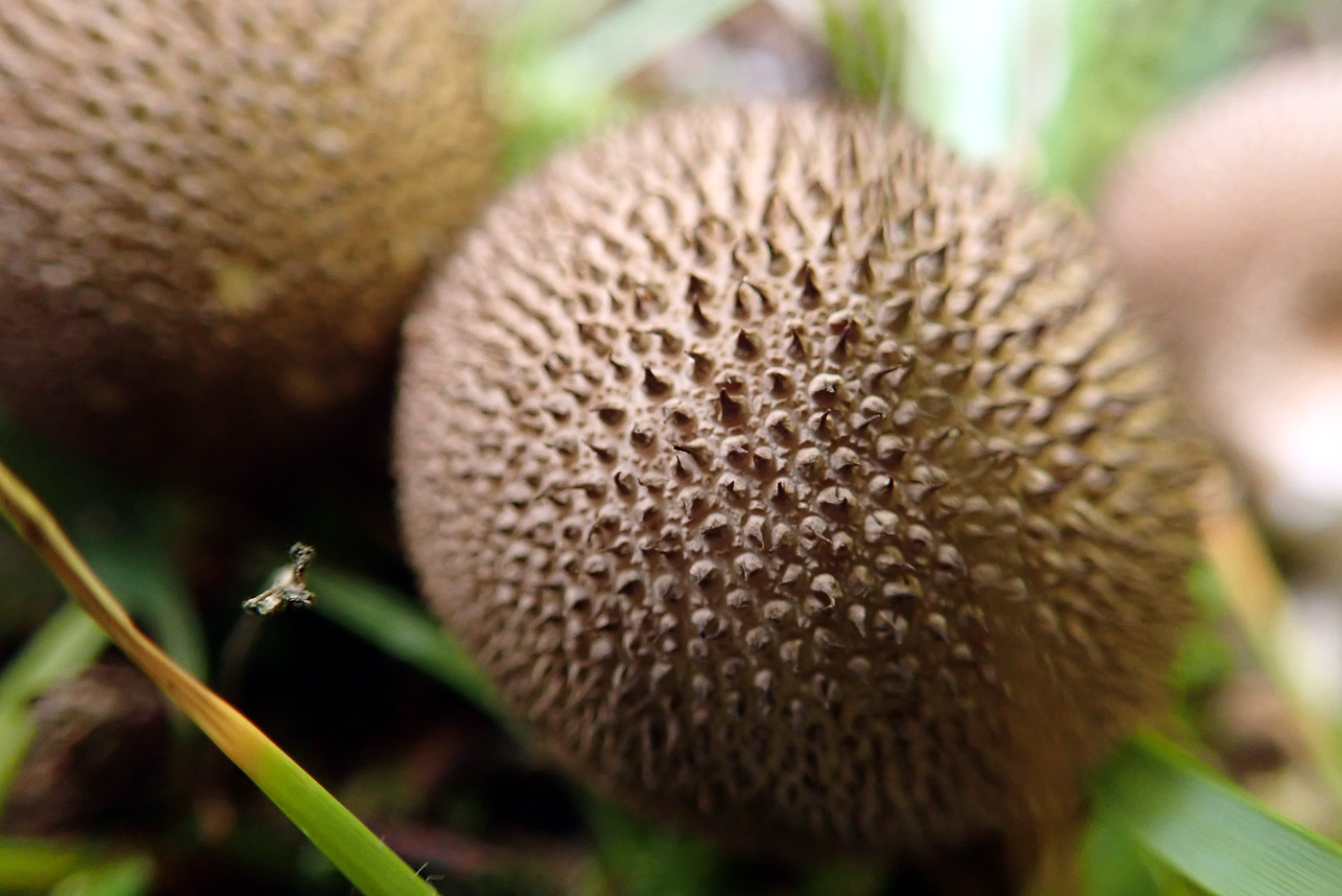 |
October 11th Lycoperdon nigrescens (Dusky Puffball)
This common species, found today by Penny Cullington at Cadmore End, completes our full house of the woodland Puffballs (see the species list for details). Generally darker than the other three species, it is brown from the start, ending up almost black and is covered in dark brown pyramidal 'warts' which when they are rubbed off leave a distinct meshlike pattern on the skin beneath. Compare with the almost white 'warts' found on L. perlatum which leave a much less distinct pattern when removed. The much longer spines of L. echinatum are much more densely packed together.
|
October 10th 2020
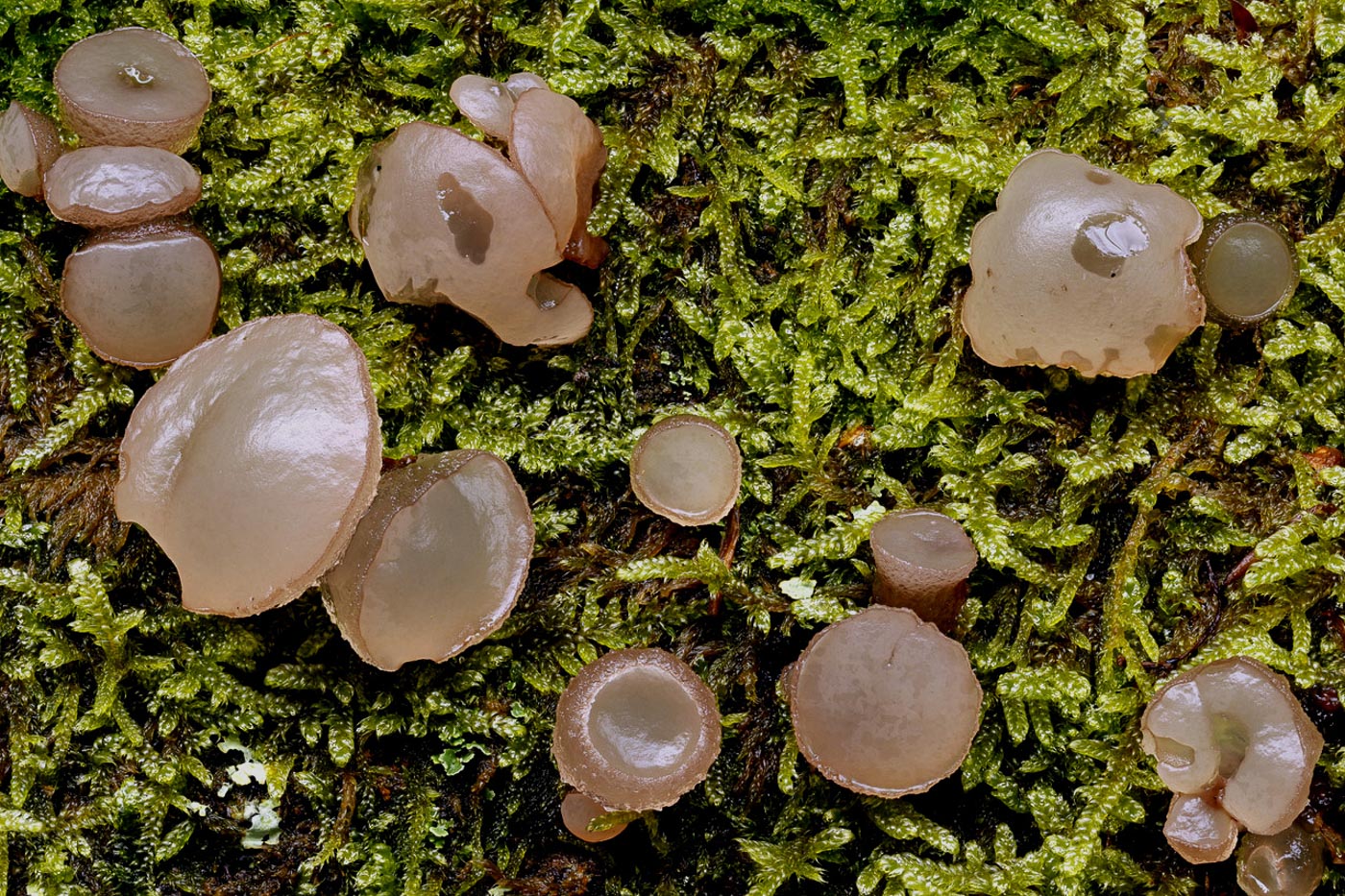
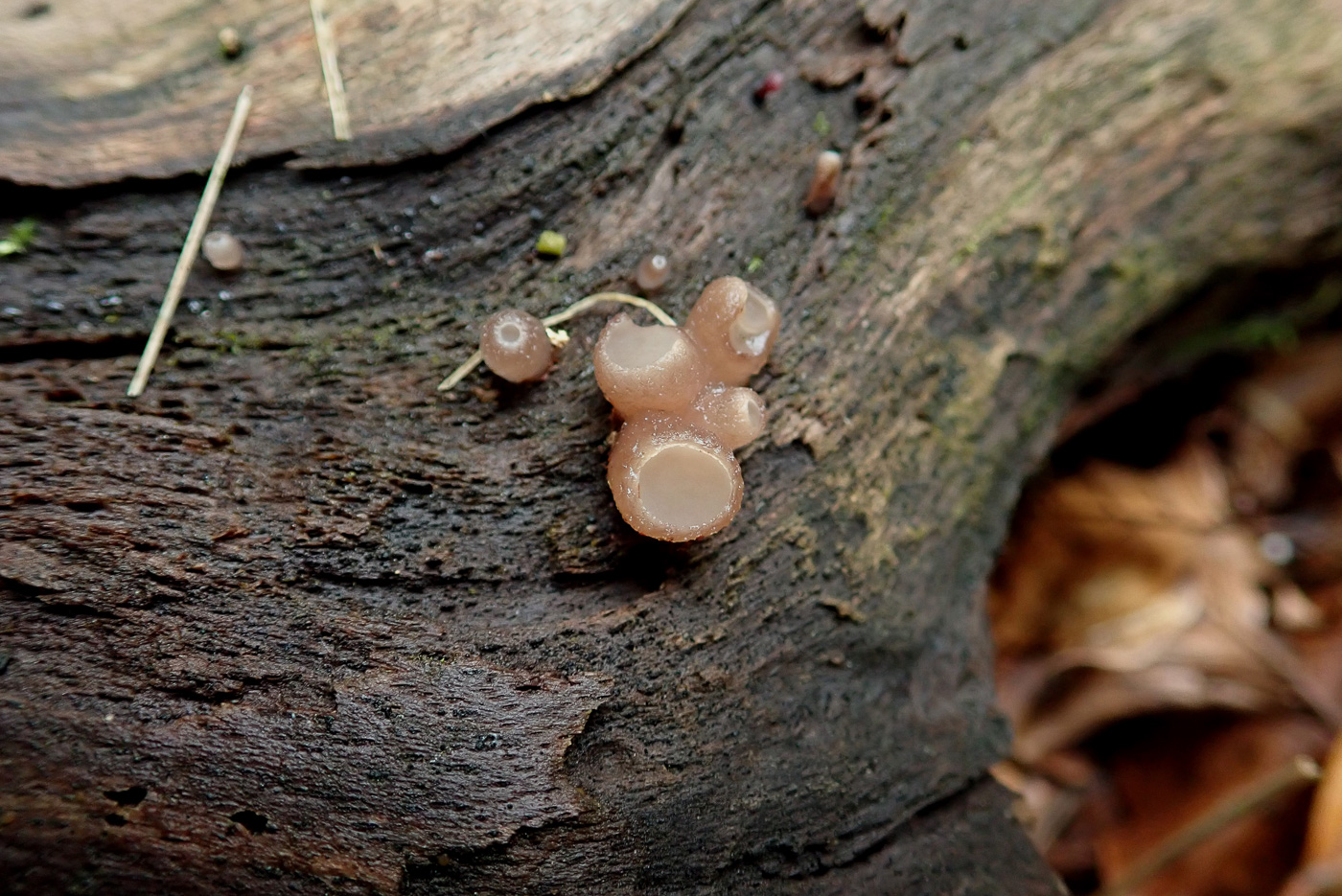 |
October 10th Neobulgaria pura (Beech Jellydisc)
This Ascomycete is usually very common on fallen Beech but seems to have only just started fruiting, found here by Paul Goby in Naphill Common (photo 1)and a couple of days later by Penny Cullington in Gussetts Wood (photo 2). Possibly confusable with Ascocoryne sarcoides (see photo dated Oct 06) and often found on the same Beech trunks, today's species is both paler and larger than the Ascocoryne and form more obvious clustered discs which can get to around 4 cm across.
|
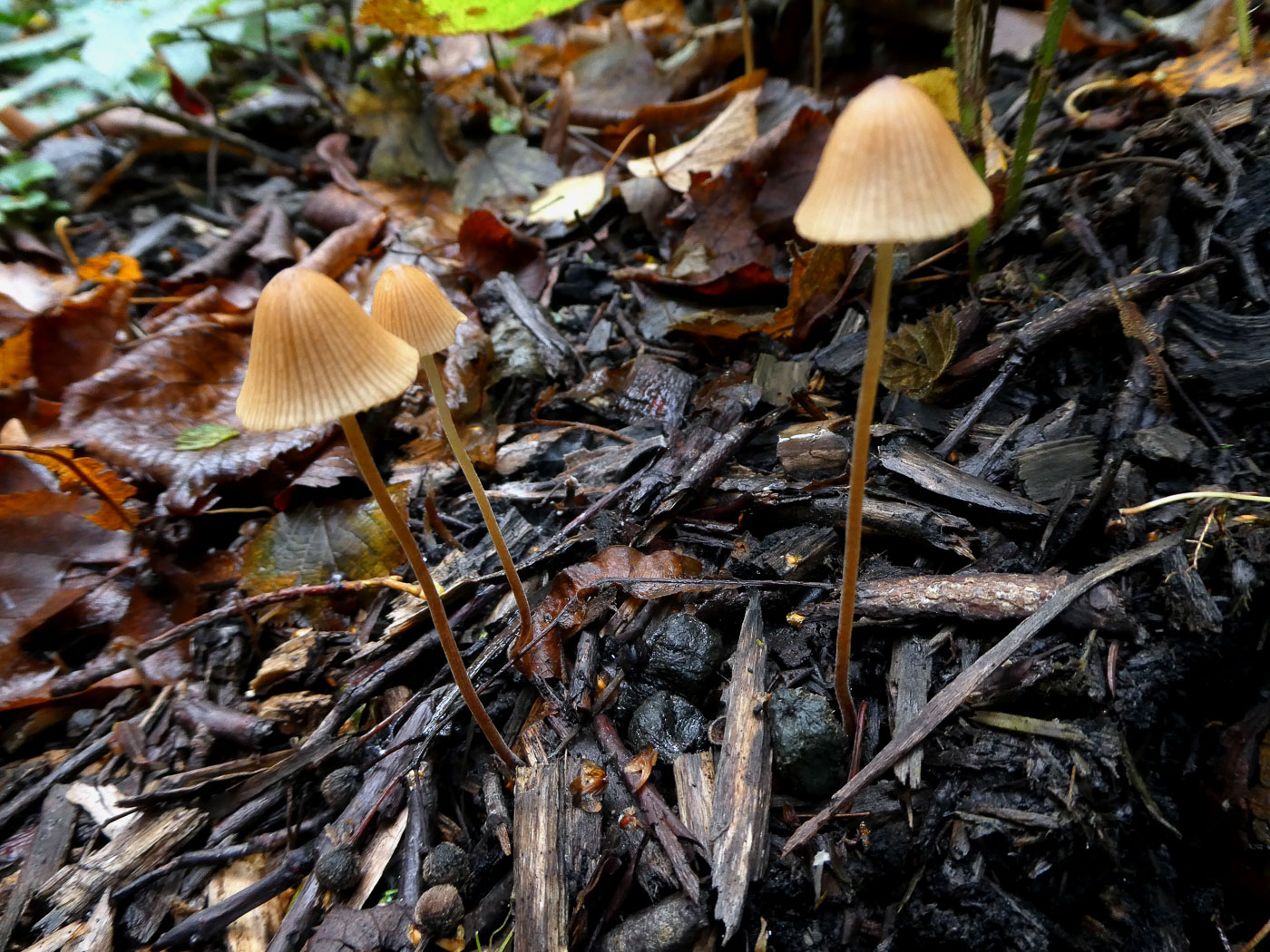
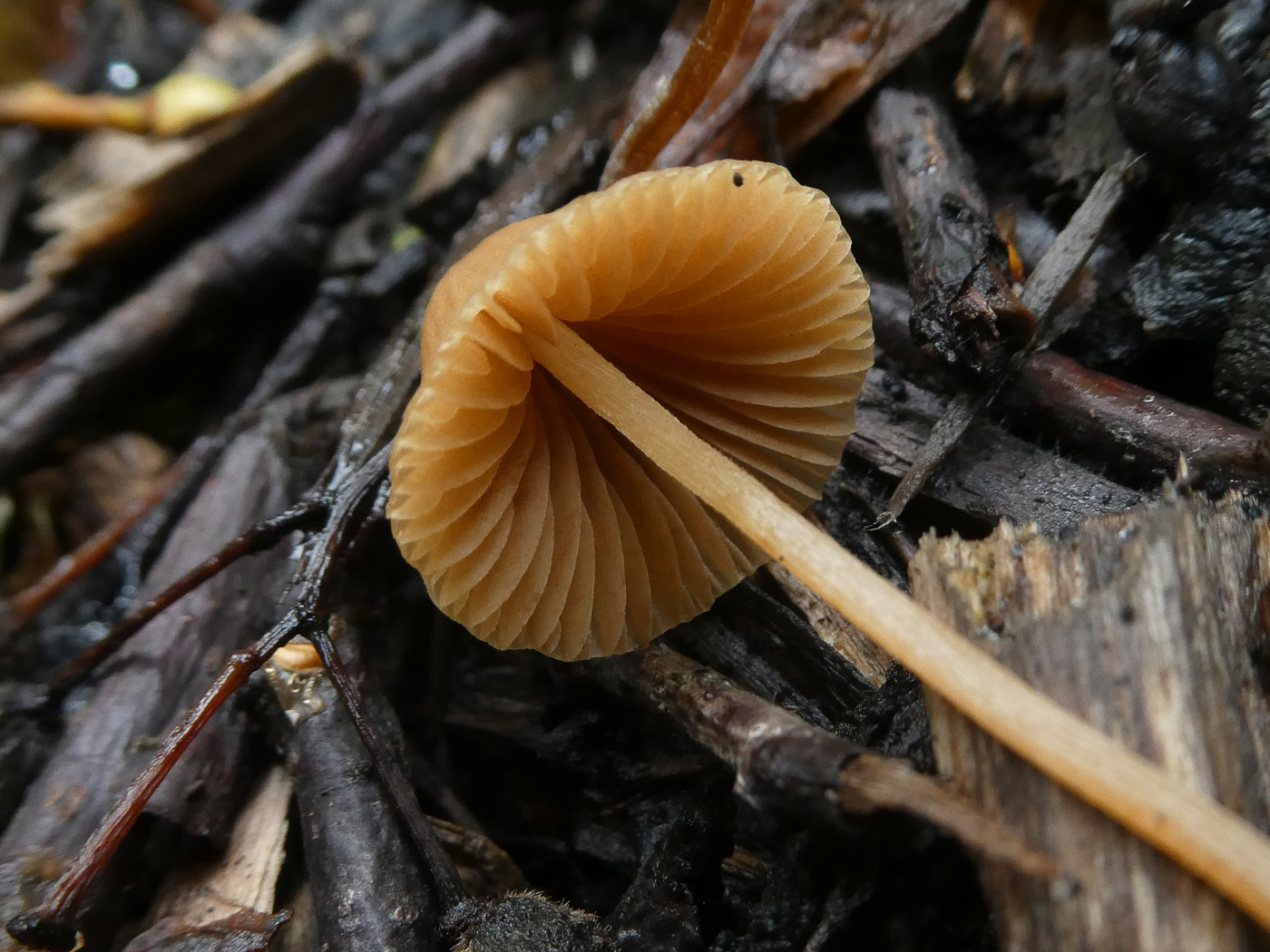 |
October 10th Galerina subclavata (a species of Bell) 
Penny Cullington only took a photo of this species to show an example of the genus, a typical LBJ (little brown job) and extremely similar to Conocybe (and Pholiotina - see photo dated Oct 08). Like a rusty smallish Mycena (Bonnet) and with rusty gills, not white as in Bonnets, the Bells tend to be very fragile with translucent slightly fluted caps and apart from one or two, they cannot be named to species without using a scope. They occur in many different habitats including grassland, on wood, in litter and most mycologists will recognise the genus and leave it at that. Today's species, just by chance, is not often recorded and we have just two previous county records. It was on the same mossy woodchip pile as our Pholiotina, dated Oct 08, in Turville Heath.
|
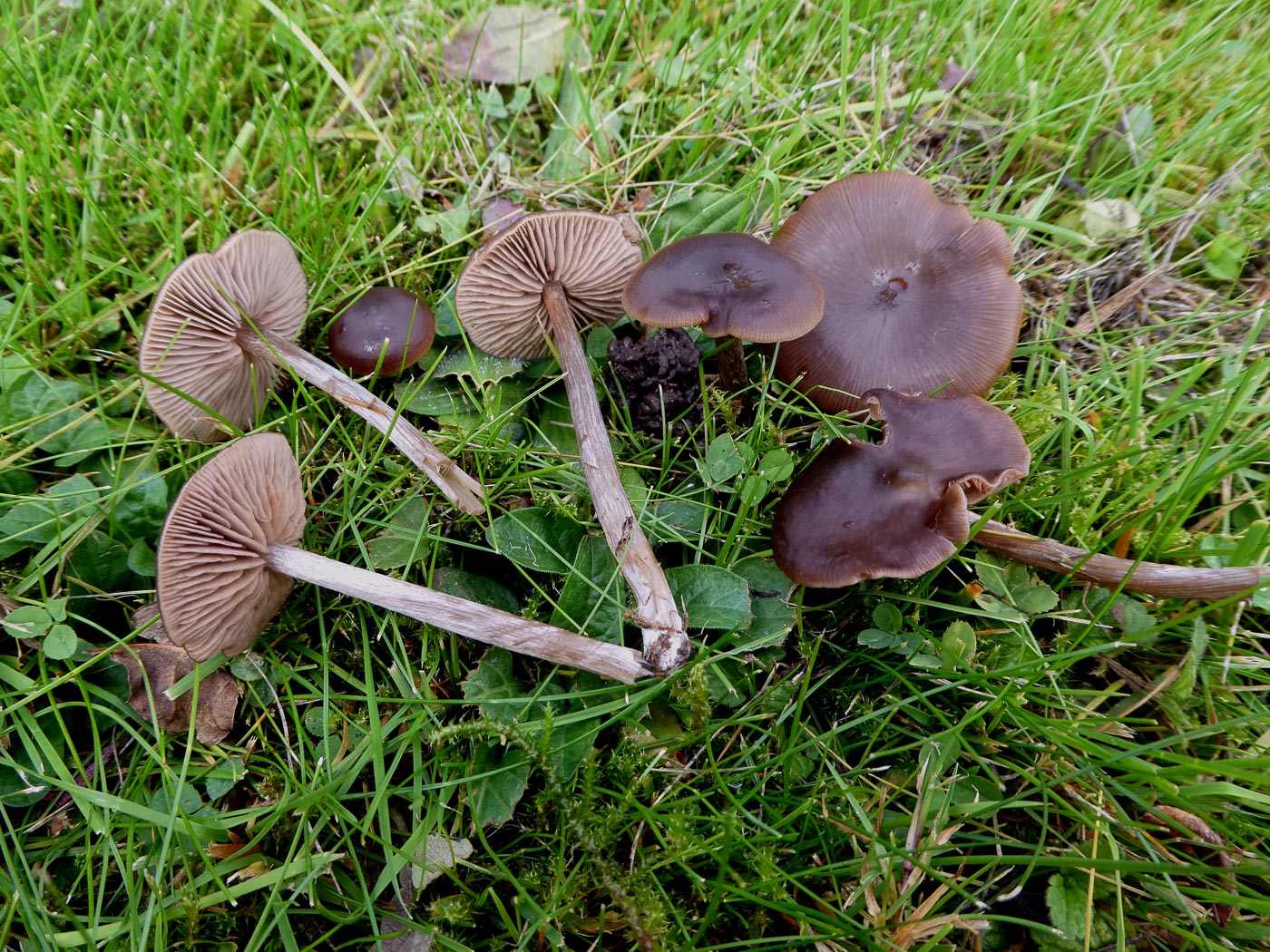 |
October 10th Entoloma sericeum (Silky Pinkgill) 
Penny Cullington found this collection in grass at Fawley churchyard. There are many species of Pinkgill and they are found in a varied range of habitats; though it is quite easy to recognise the genus, naming to species is quite another matter! In the field one can spot the pink brown gills of the genus - similar in colour to those of Pluteus also - and with a scope the spores are very distinctively and uniquely angular. Today's species is one of the most common to inhabit grassland and the shiny silky brown flat caps up to 3cm across are typical. It was still necessary to check the spores and other features because there are many other brown capped Pinkgills.
|
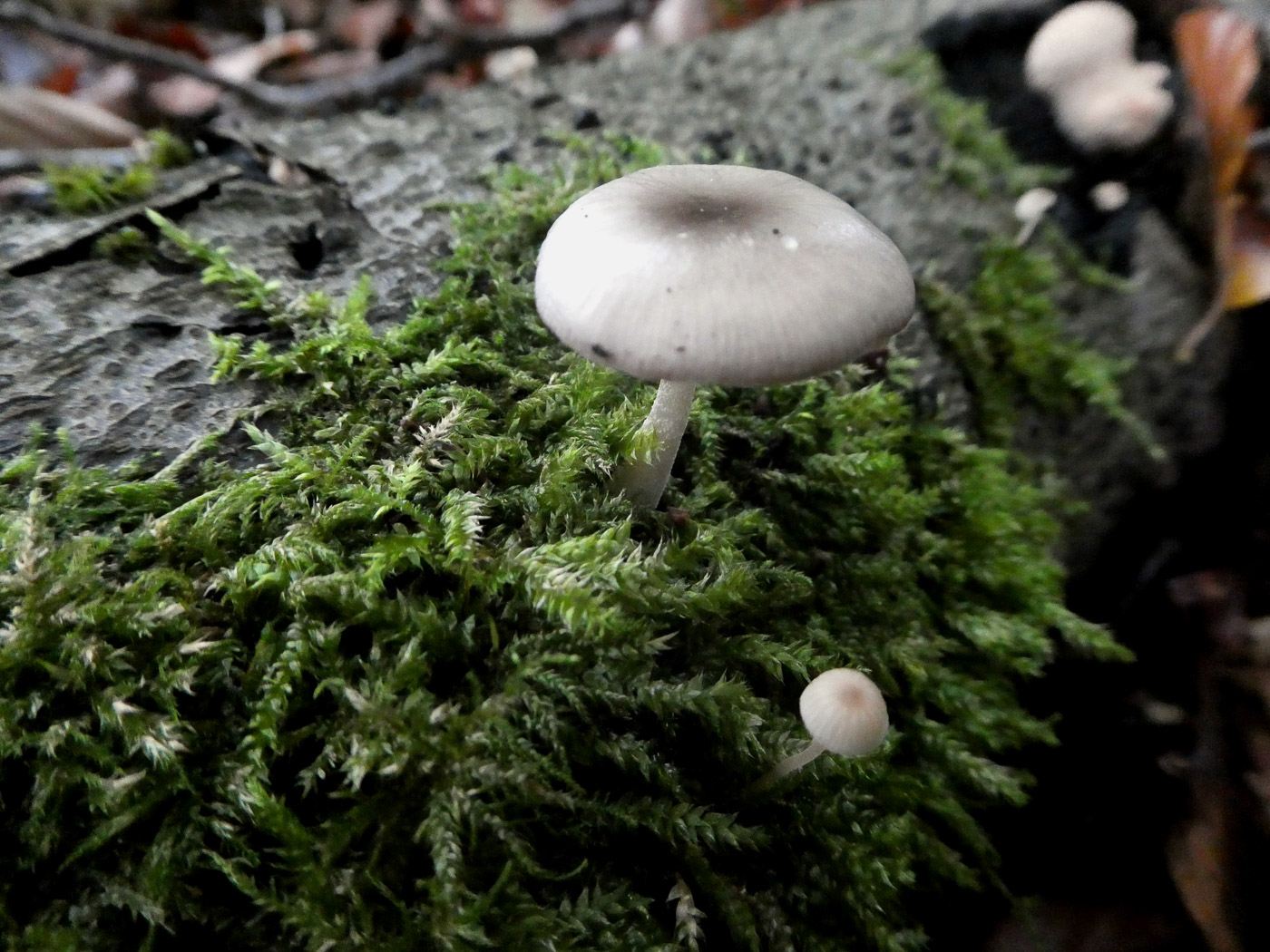
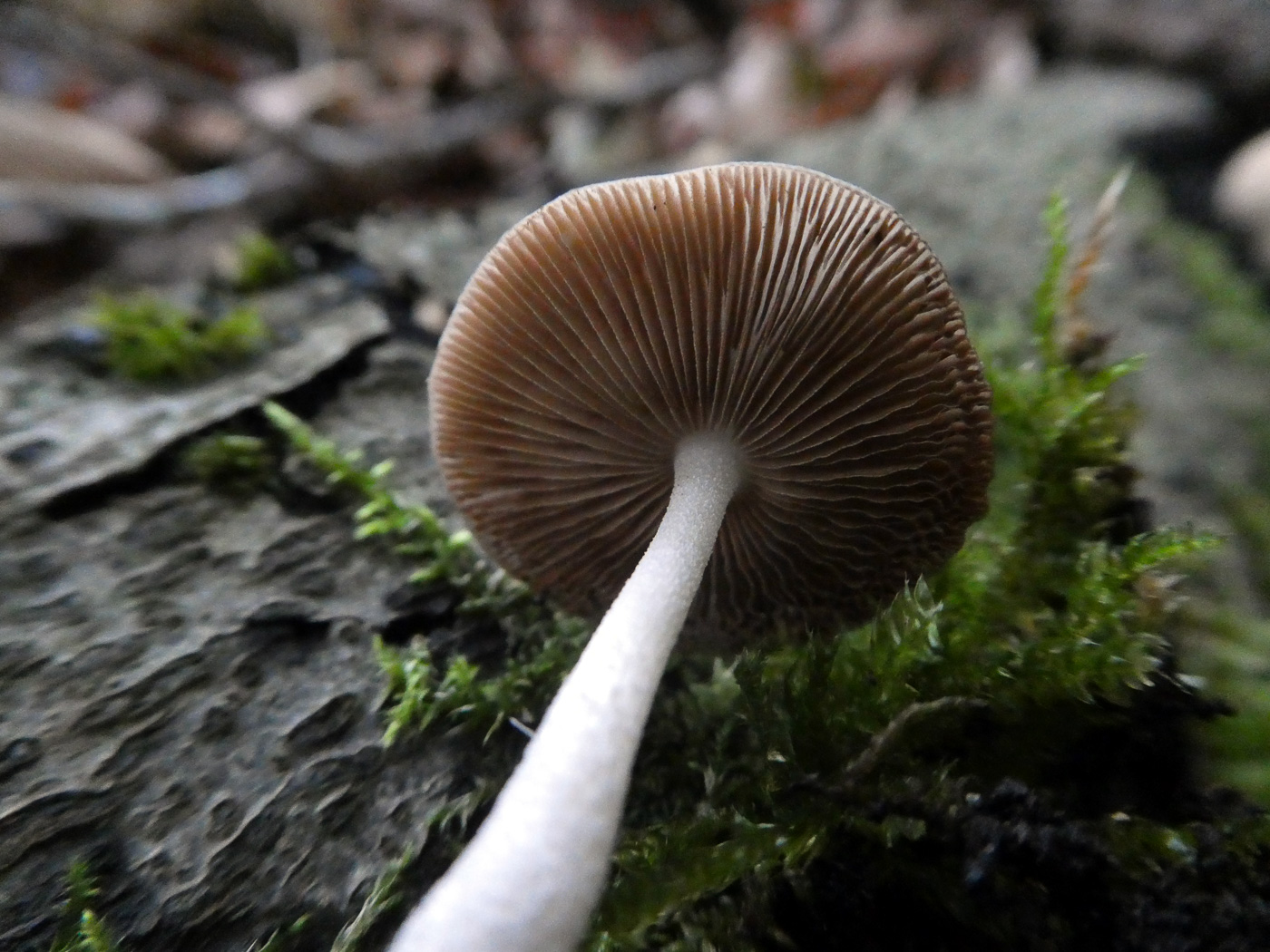 |
October 10th Bolbitius reticulatus (Netted Fieldcap) 
When Penny Cullington saw this small mushroom on a rotting Beech pile in Gussetts Wood she thought it was a species of Pluteus (Shield). The gills were free (unattached to the top of the stem) as they should be for this genus but seemed to be too rusty brown rather than pink. At home the spores were entirely the wrong colour and shape for Pluteus, so it was back to the drawing board with a lengthy key to genera to wade through. The sticky cap was a useful clue and eventually all features, including microscopic, fitted into place. Not really rare but with few county records, this was a new species to Penny.
|
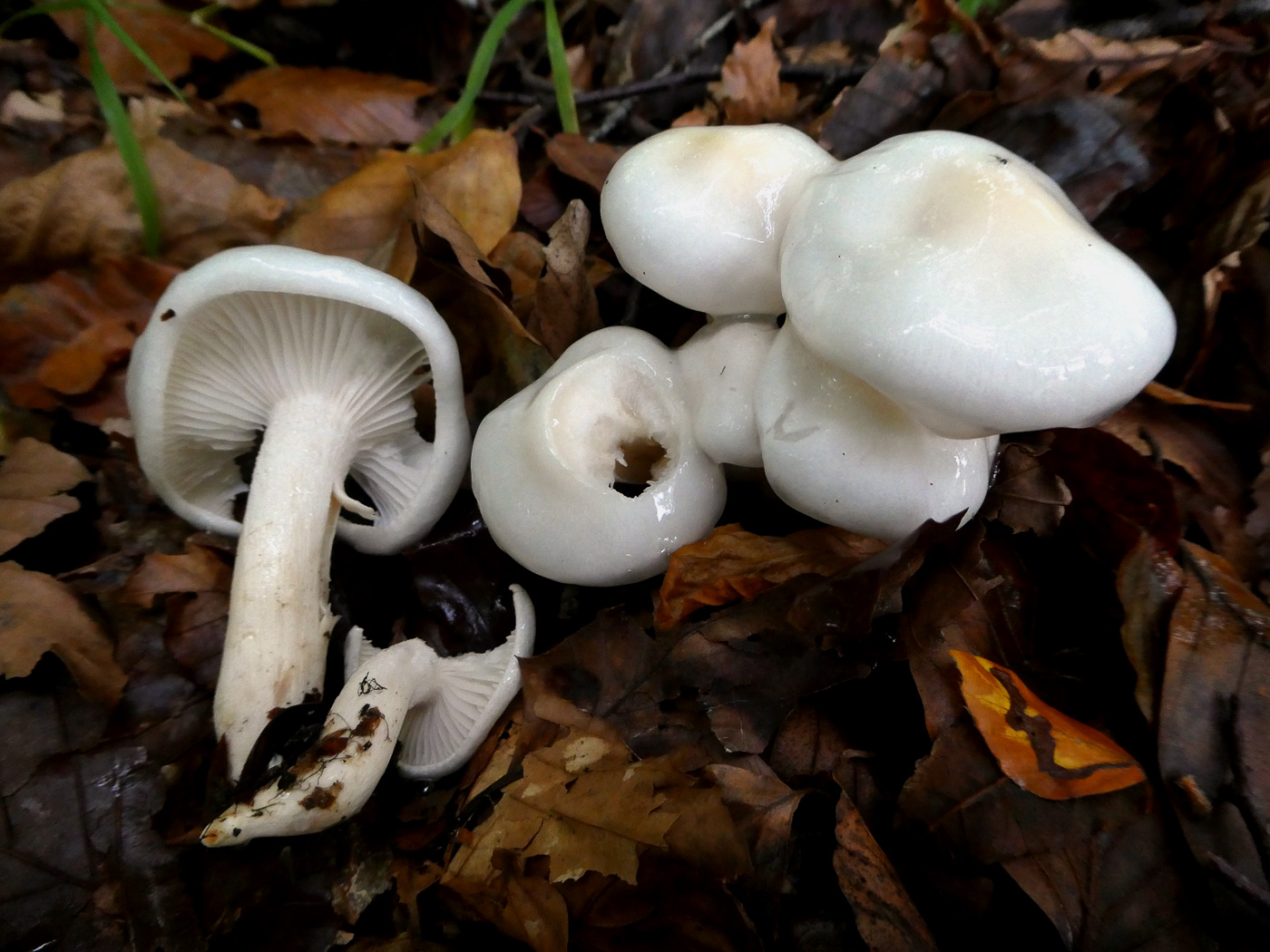
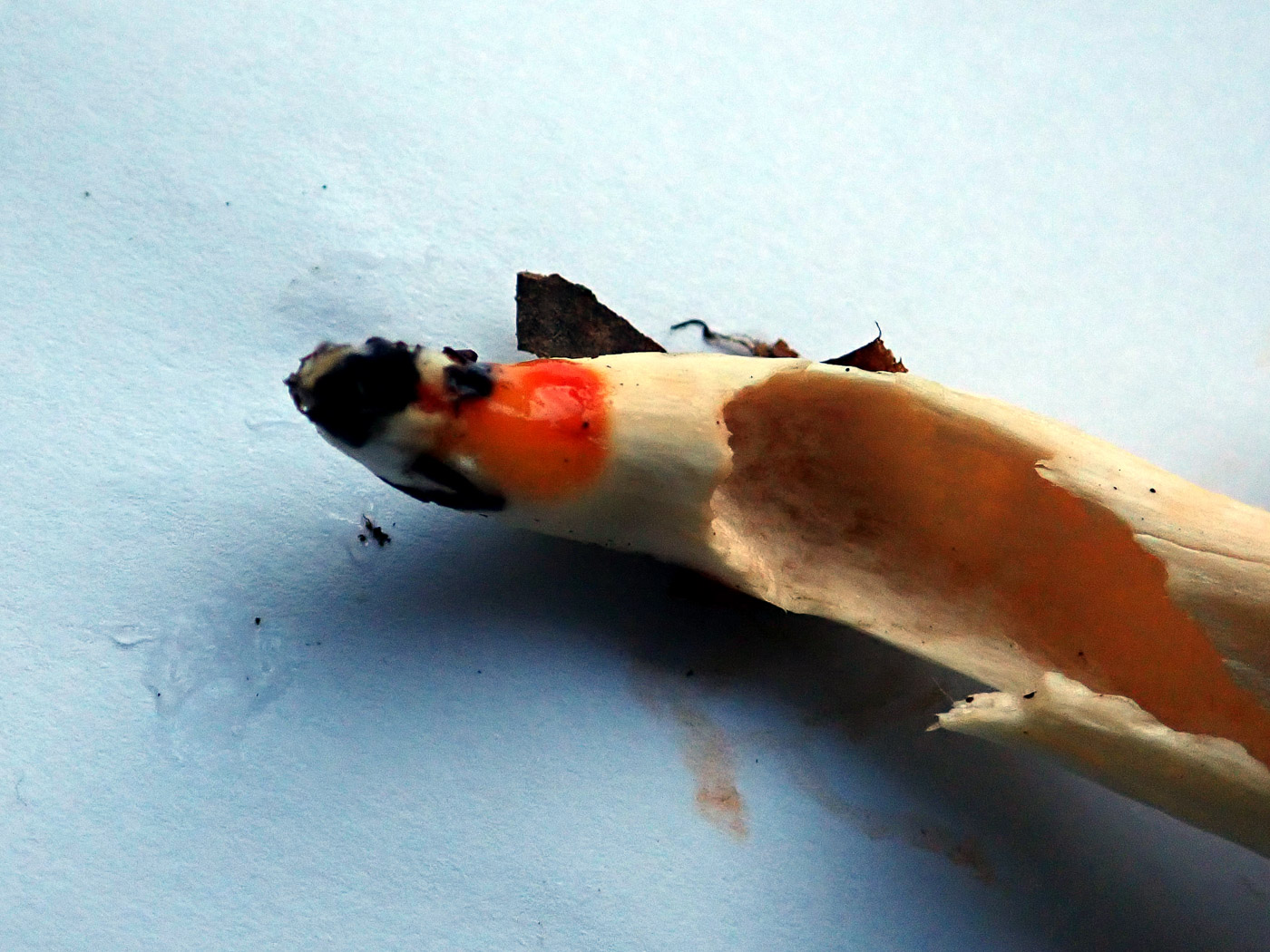 |
October 10th Hygrophorus eburneus (Ivory Woodwax)
Penny Cullington came across good numbers of this quite unusual species in Beech litter in Gussets Wood. You know you have one of the white Woodwax species as soon as you try and pick one: they are so slimy, both caps and stems, that it can be hard to hang on to them, especially after rain as today. There are several almost identical white species and one needs to notice under which tree they are growing and then test them later with a drop of KOH. Today's species grows under Beech and KOH on the cap has no effect at all but the stem base turns bright rusty orange (see photo 2). Hopefully we'll be able to demonstrate KOH on other Woodwax species when available.
|
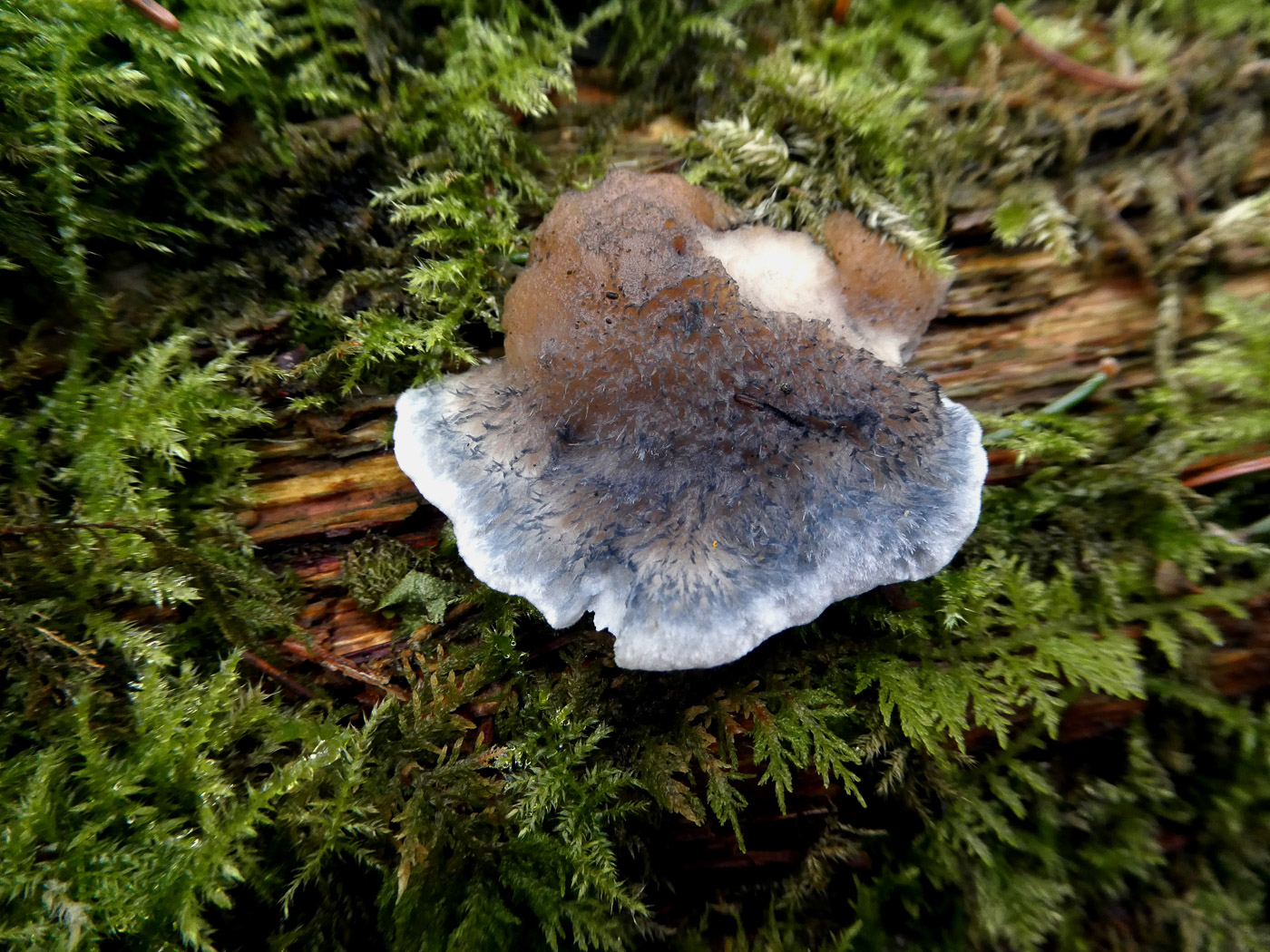
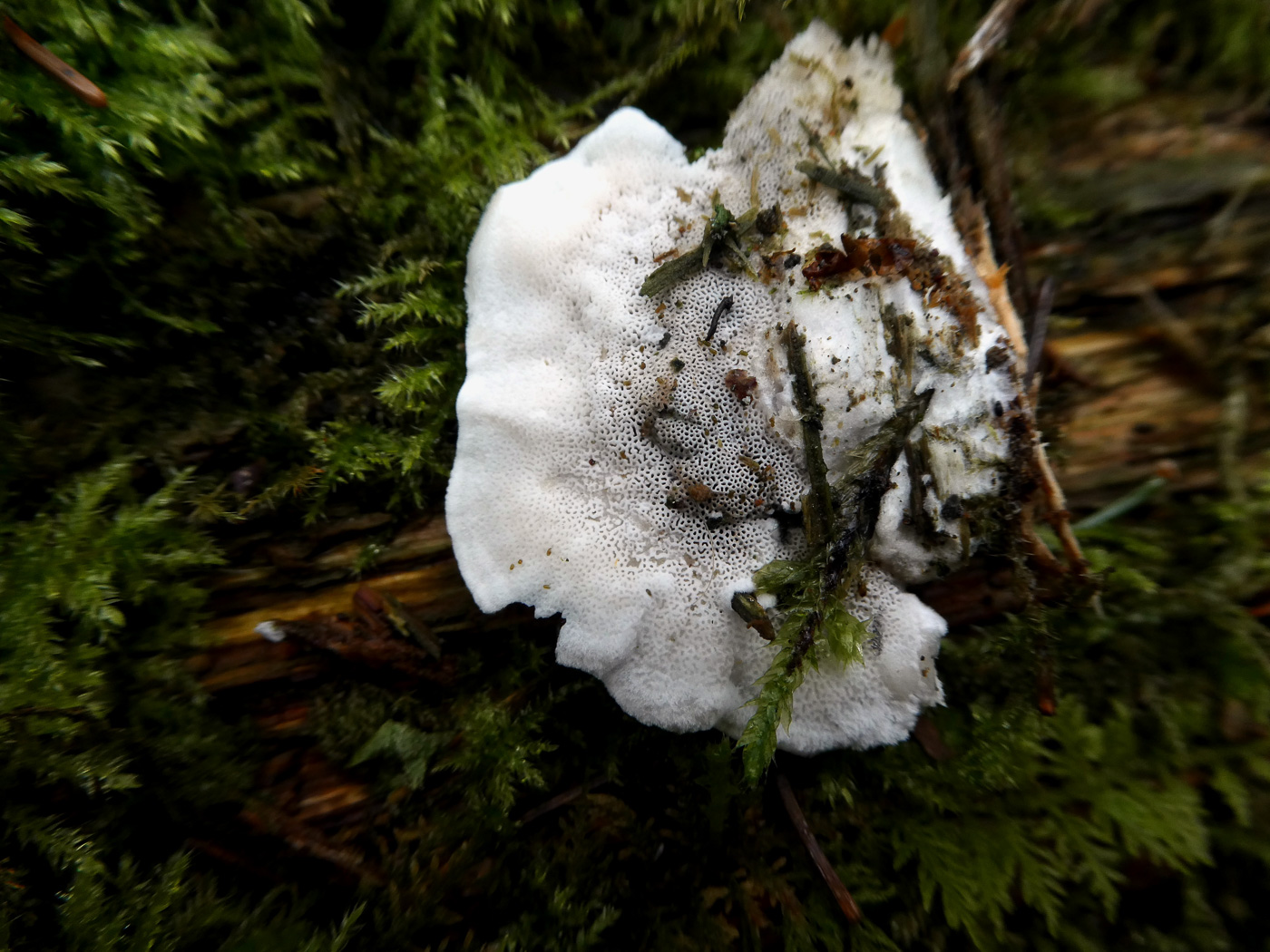 |
October 10th Postia caesia (Conifer Blueing Bracket)
On the edge of a Spruce plantation in Gussetts Wood Penny Cullington found this bracket on a fallen trunk. The genus Postia forms soft quite small thick brackets on fallen wood; they have very small pores and are either white to cream or have a tinge of blue. Some only grow on conifer, some only on deciduous wood, so it's important to notice the host tree for identification. Today's species is an easy one to name with its distinctive blue edge and occurrence on conifer.
|
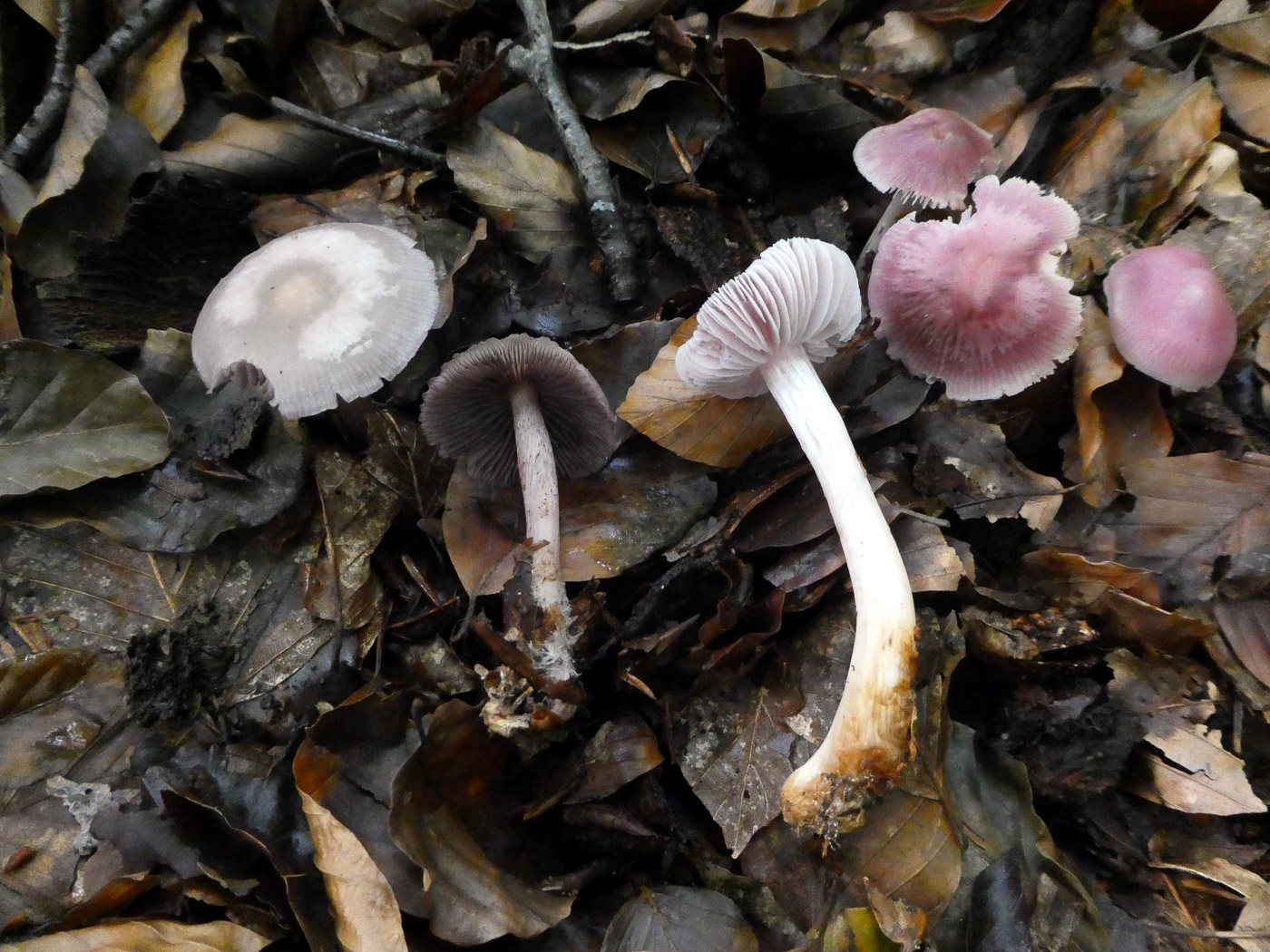
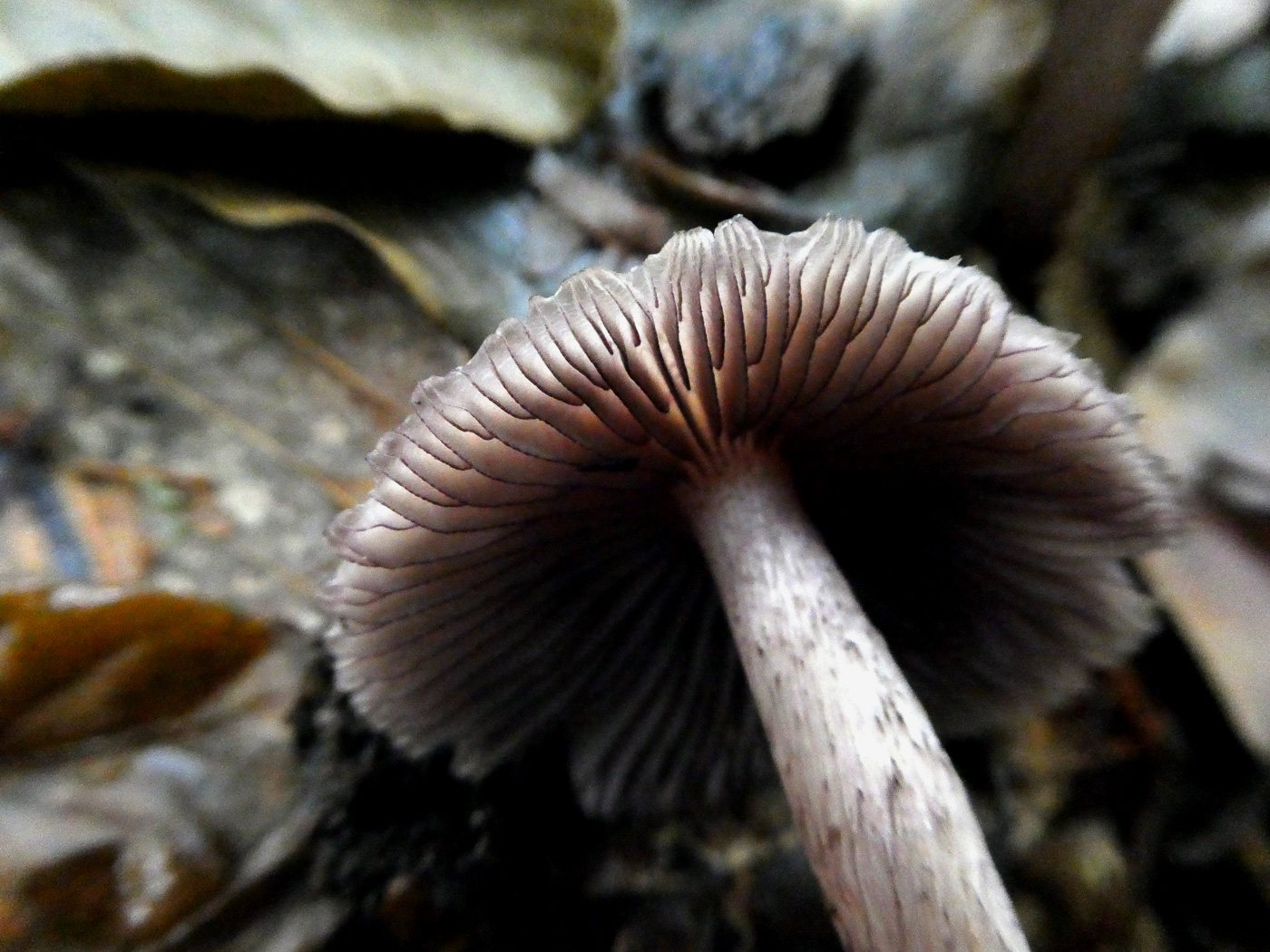
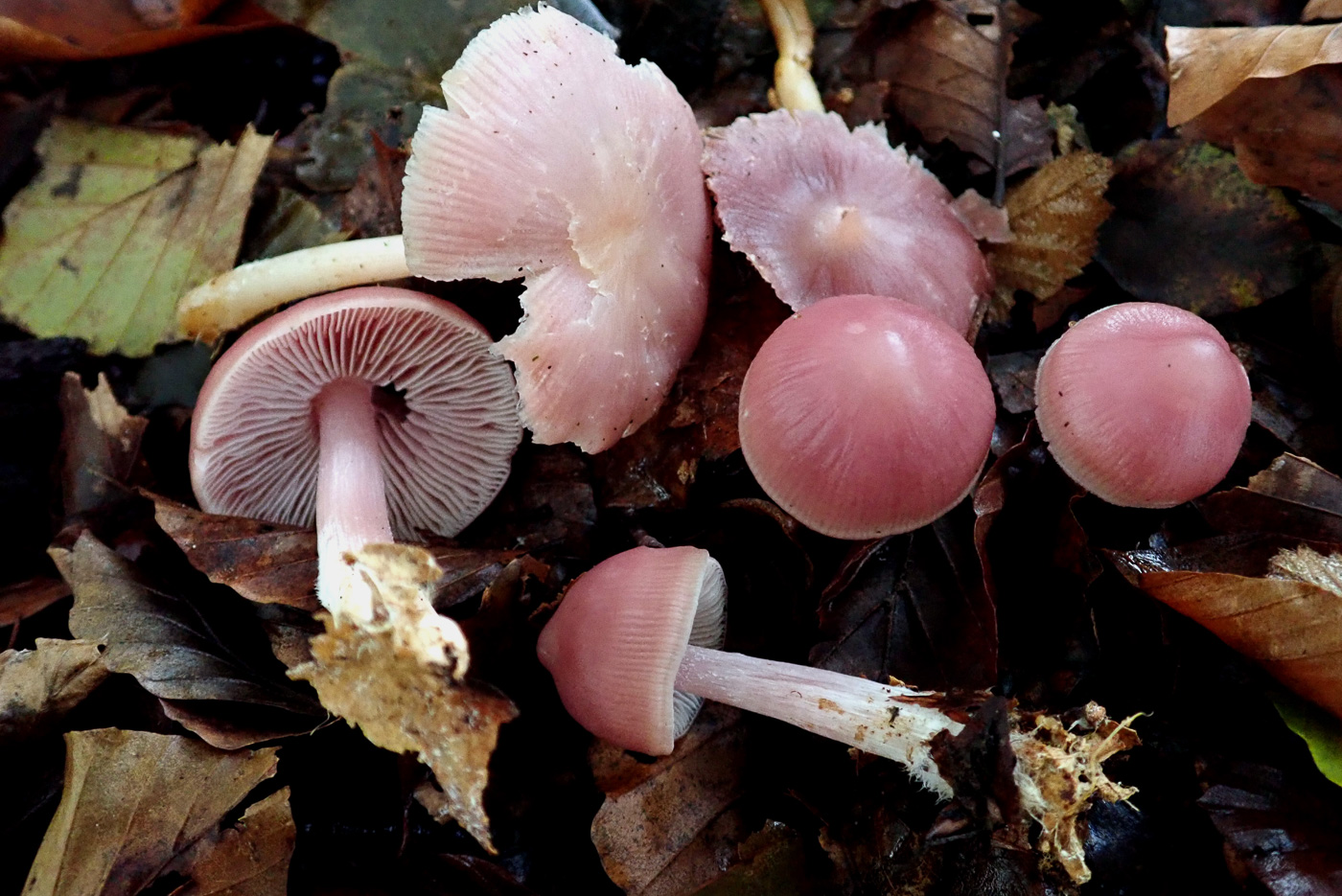 |
October 10th Mycena rosea with Mycena pelianthina (Rosy Bonnet with Black Edge Bonnet)
Penny Cullington took the opportunity to make a comparison between these two Bonnets growing together in Beech litter in Gussetts Wood. They are closely related, are roughly the same size with caps up to 3 or 4 cms across, have the same distinctive smell of radish and are equally common in Beech litter. On the right: four specimens of Rosy Bonnet (note the white gills and stem which contrast with the rosy cap); on the left: two specimens of Black Edge Bonnet (note the much more non-descript cap colour and dark edged gills). (We have an earlier photo of this dated Sept 11.) Photo 3 is of a pristine collection of M. rosea found two days later at Pulpit Hill. There is a third similar species, Mycena pura, which we hope to be able to illustrate soon.
|
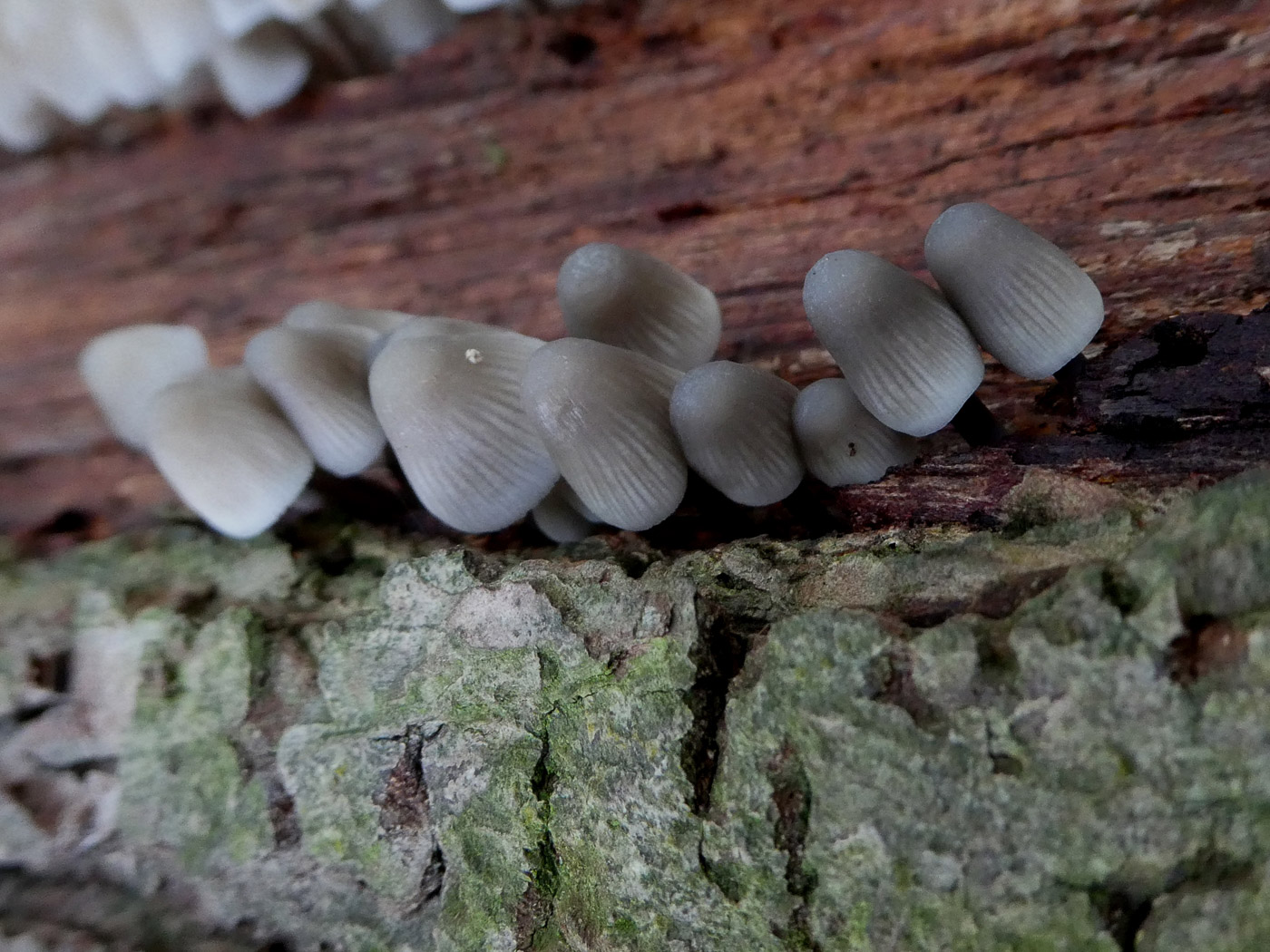
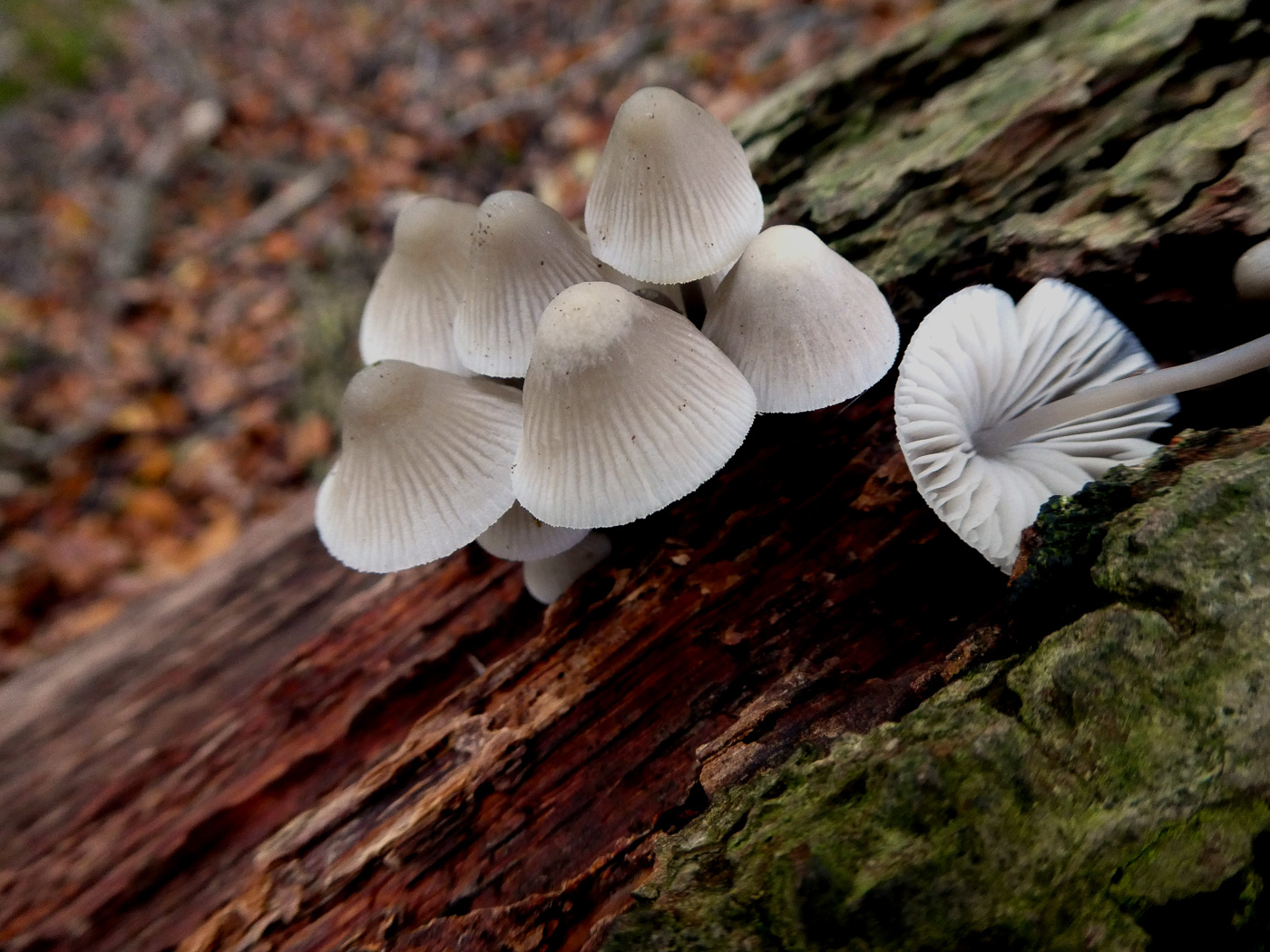
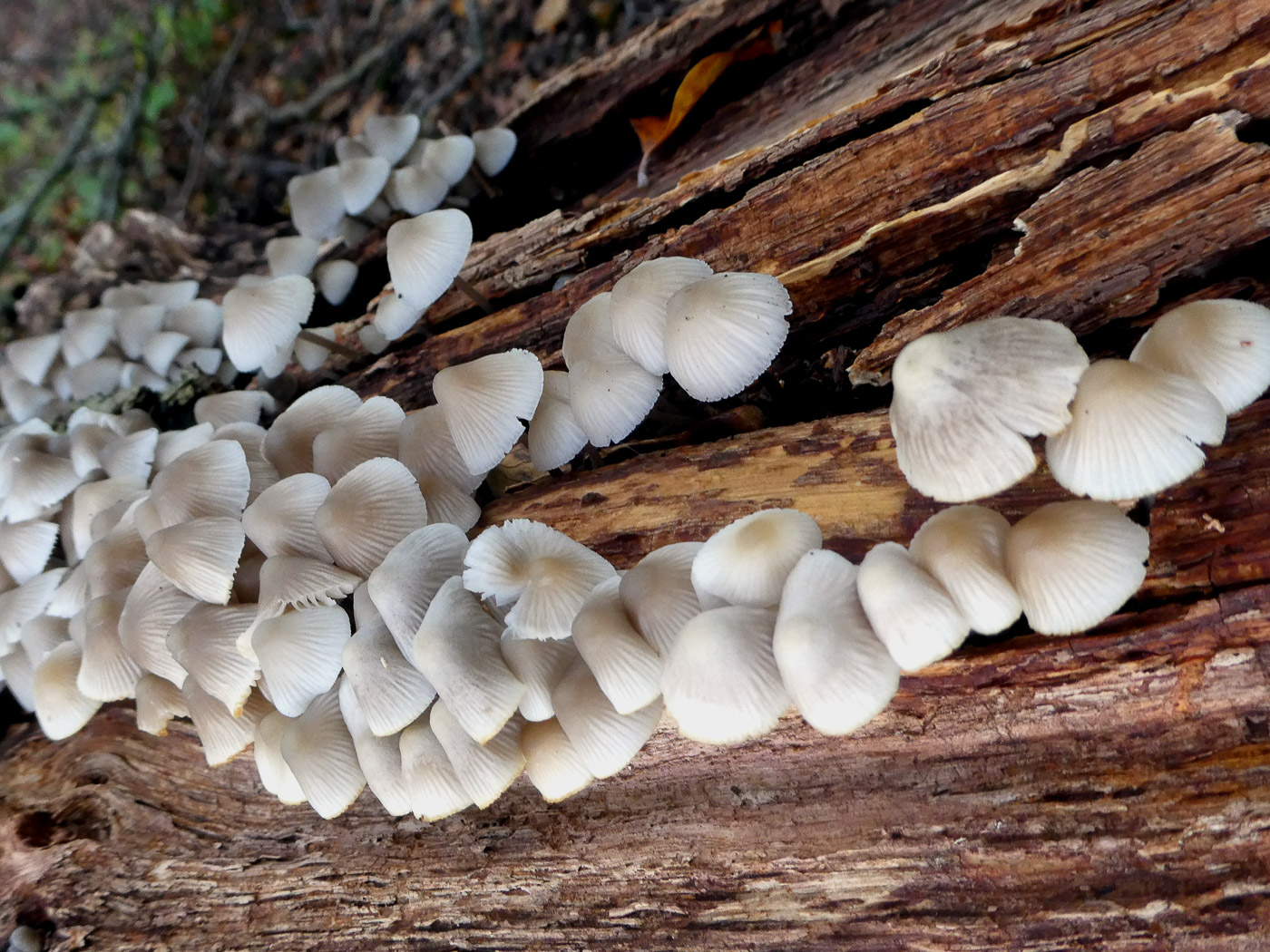 |
October 10th Mycena arcangeliana (Angel's Bonnet)
This colony of Bonnets was fruiting on a fallen Beech trunk in Gussetts Wood, found by Penny Cullington. One of our commonest wood-inhabiting Bonnets, it tends to form troops, as here, and caps rarely gets much bigger than 2 cm across. The shape, colour and visible striations on very young fruit bodies is typical, as in photo 1; the white gills of the genus and and olive brown tinge to the caps seen in photo 2 is also typical, making this species recognisable (with experience) without recourse to a scope, especially if you place a few specimens in a small container where the smell of iodoform develops as they dry out.
|
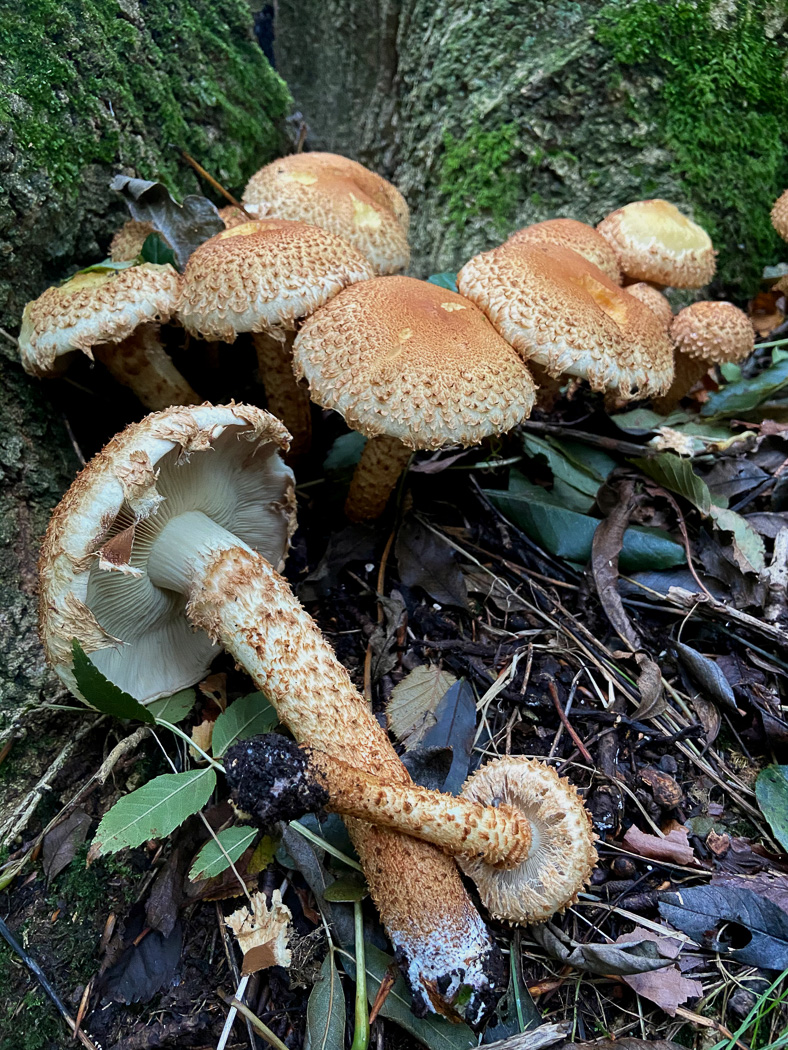
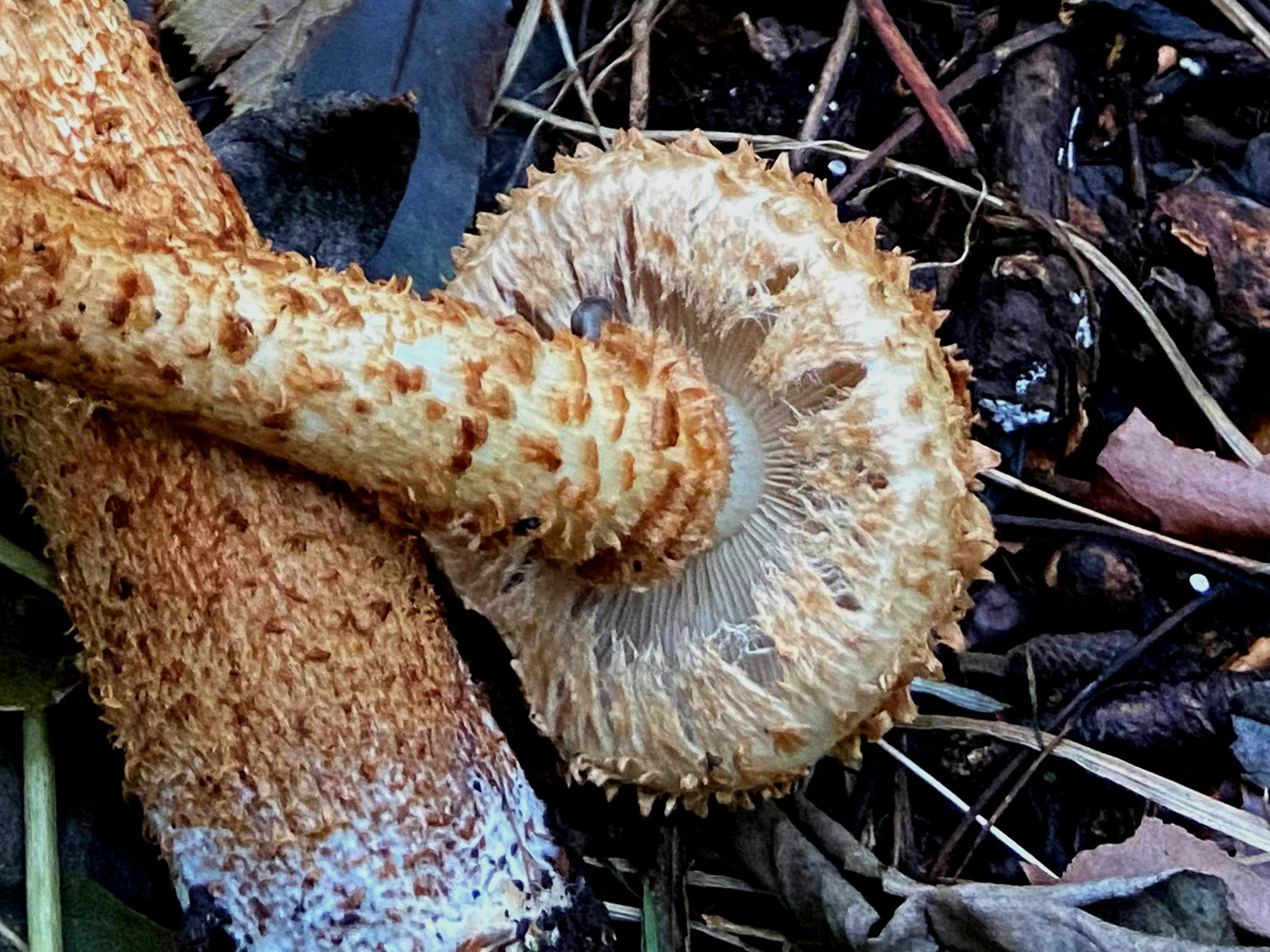 |
October 10th Pholiota squarrosa (Shaggy Scalycap)
This impressive cluster was found by Sarah Ebdon in North Dean, Hughenden Valley, at the base of an unidentified deciduous tree. This is probably the commonest Scalycap and grows with various different tree species. Compared with our Pholiota dated Oct 01 and 06, this species has coarse brown raised scales on its dry cap and stem; note also in the second photo the membranous ring forming as the young cap starts to expand.
|
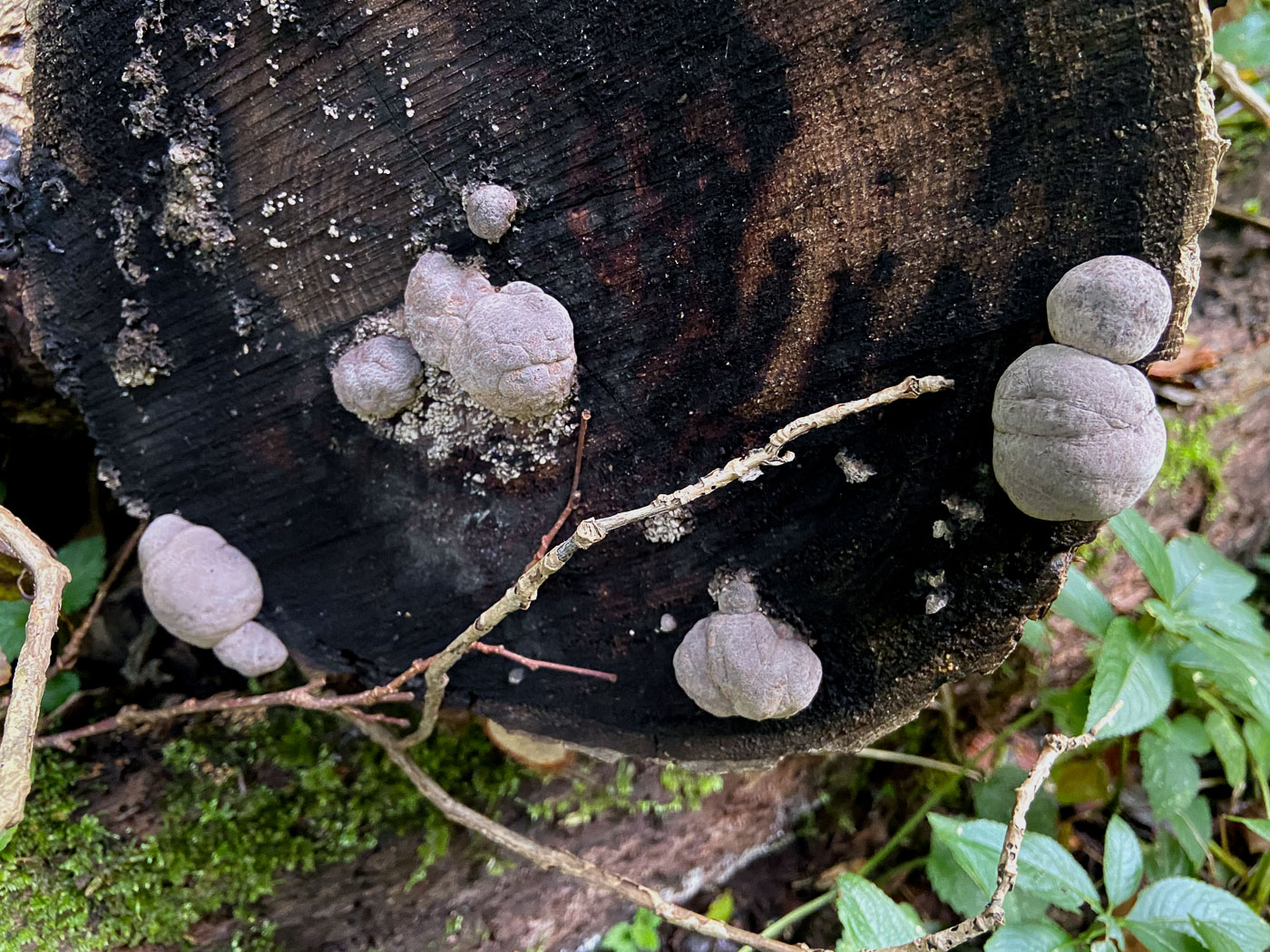
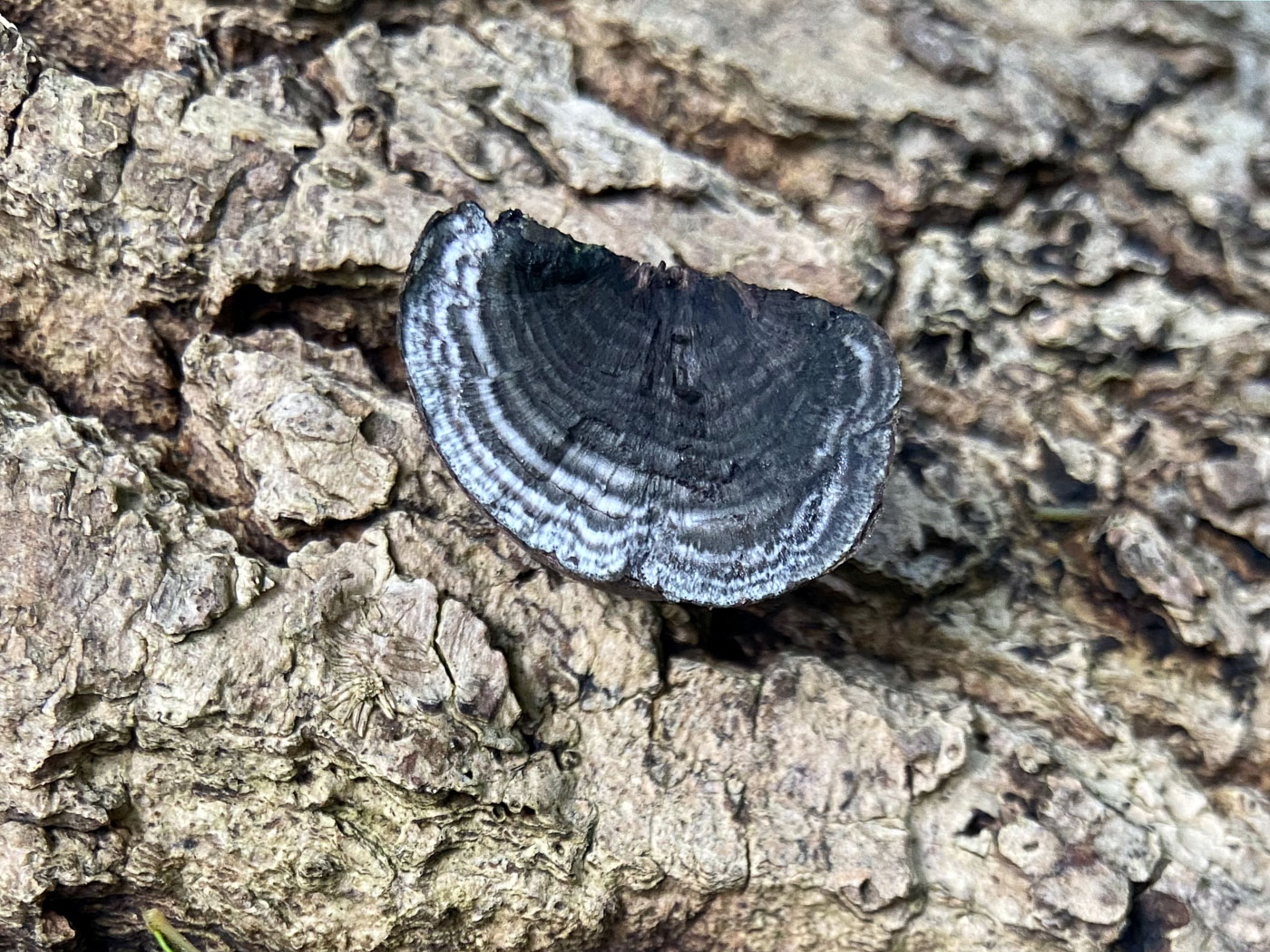
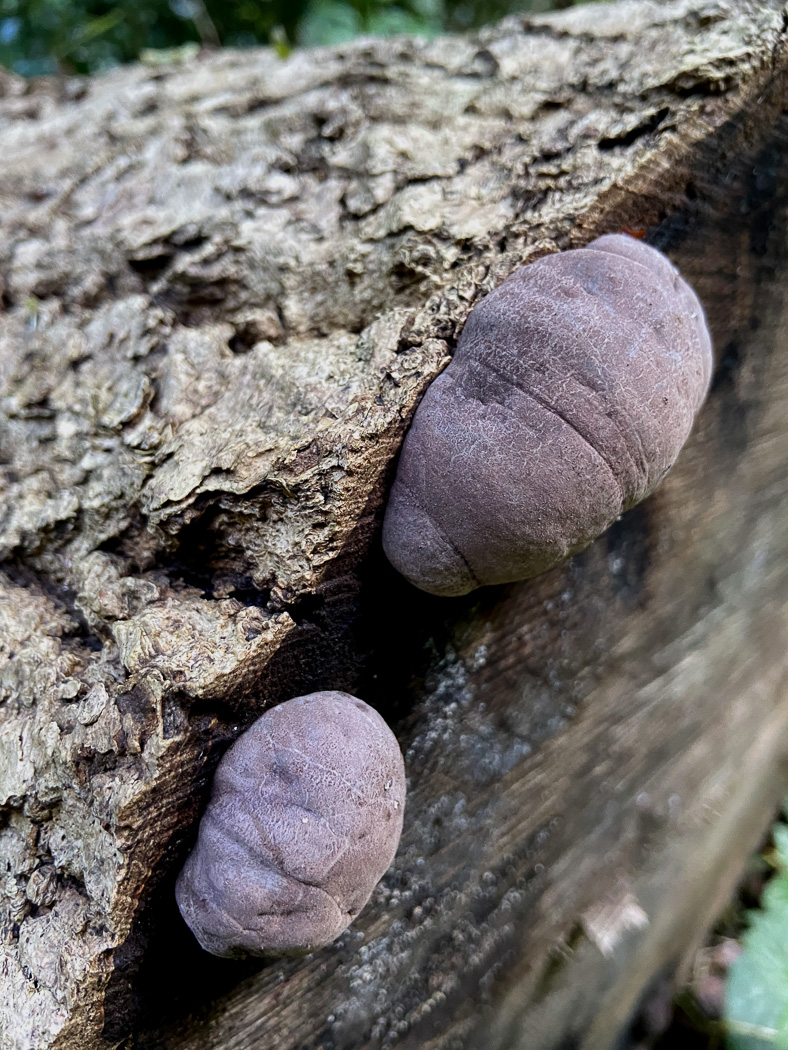 |
October 10th Daldinia concentrica (King Alfred's Cakes)
This very common Ascomycete has been conspicuous by its absence so far this season and was found by Sarah Ebdon in North Dean, Hughenden Valley on felled Ash. This is young fresh material thus its rather pale appearance with pruinose 'bloom'; once this is lost it eventually turns from cocoa brown to black (like burnt cakes!) Sarah broke one open to see the telltale concentric rings within which are a diagnostic feature of the genus, of which this is the only common species and nearly always found on Ash.
|
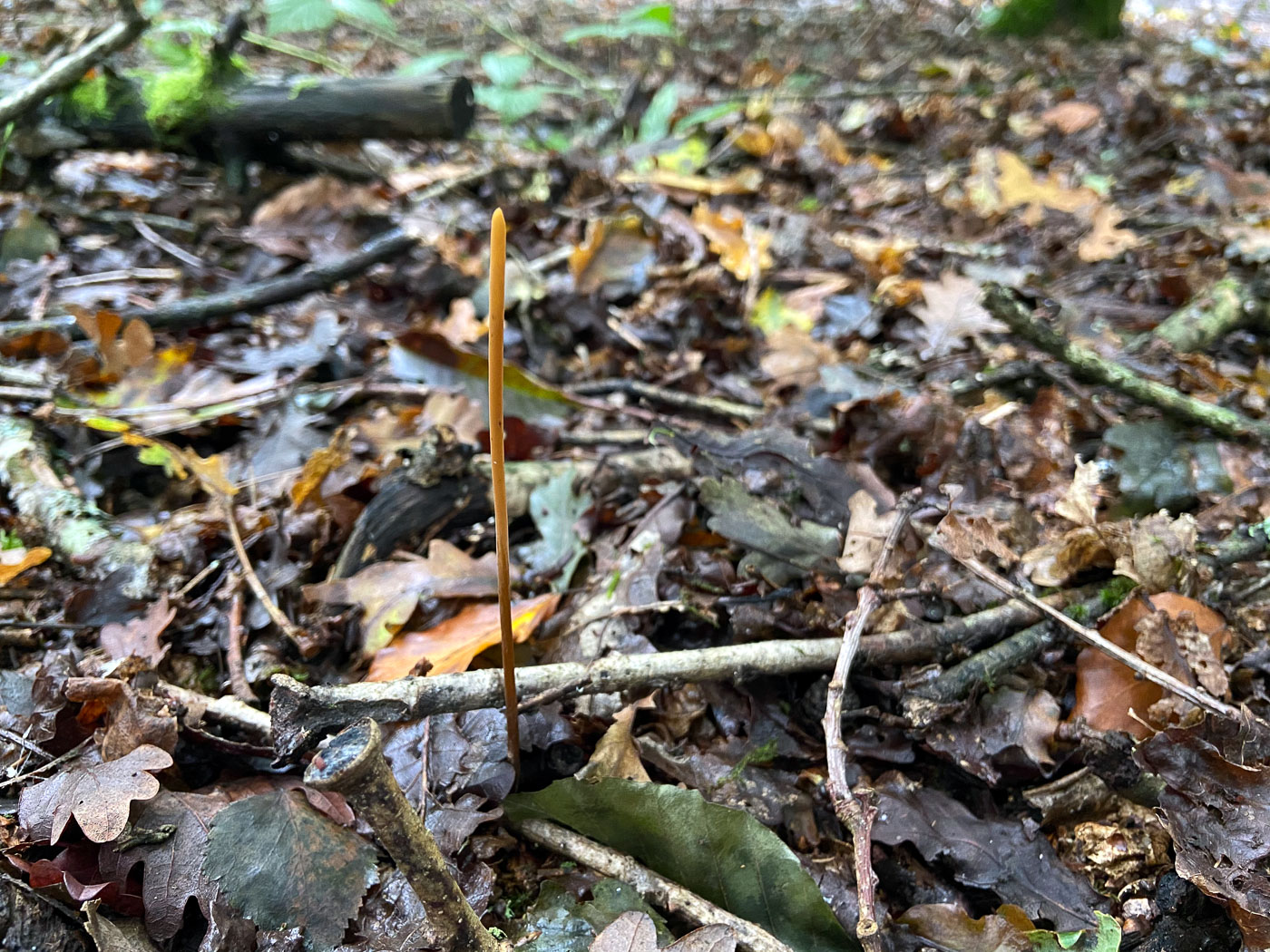 |
October 10th Macrotyphula fistolosa (Pipe Club)
Having been alerted to the presence of this fungus next to her Stinkhorn in Naphill Common on Oct 8th, Sarah Ebdon returned for the photo shown here. These unusual-looking fungi can get to 30 cm high and can be solitary as here or gregarious. They favour Beech litter and are quite common though easily missed!
|
October 8th 2020
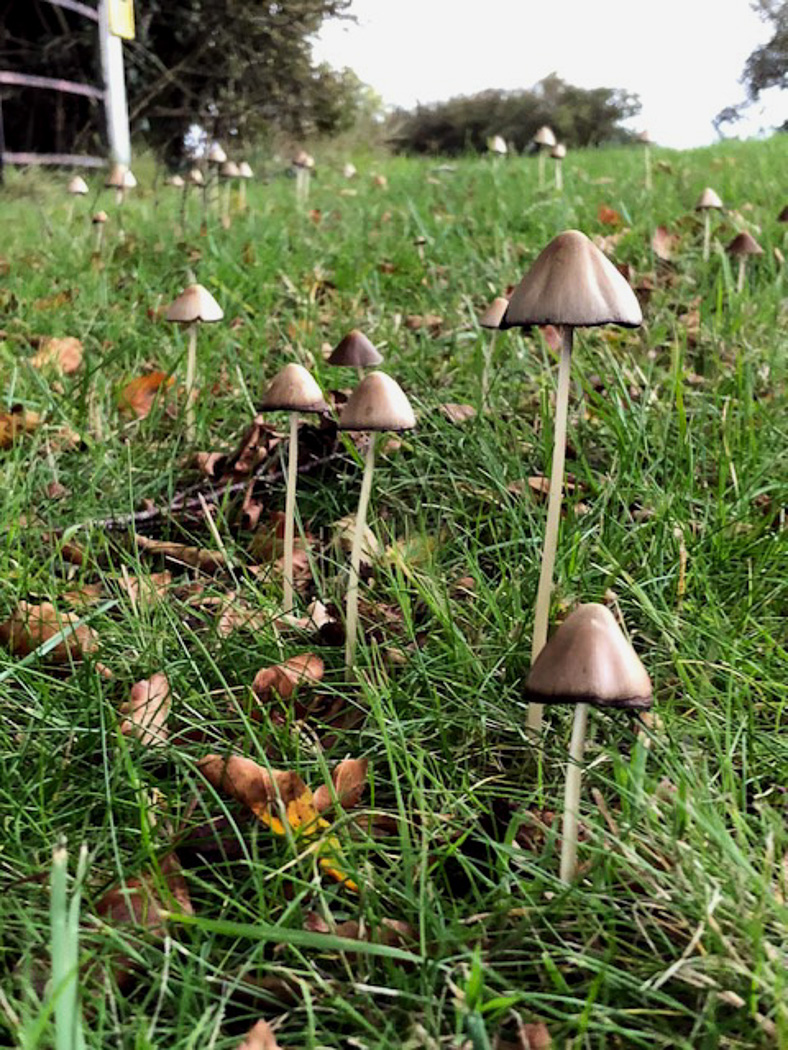 |
October 8th Psathyrella pseudogracilis (a species of Brittlestem) 
Tony Knight found a patch of around 200 fruit bodies of this unusual species in grass near Chilton. Superficially similar to many other Brittlestems (see also Conical Brittlestem dated Oct 07 and Red Edge Brittlestem dated Oct 01) this species has distinctive cells on the gill - found by Tony - which confirm the identification. The sparse number of records for it probably reflects the reluctance of many mycologists to work on this tricky genus rather than its rarity.
|
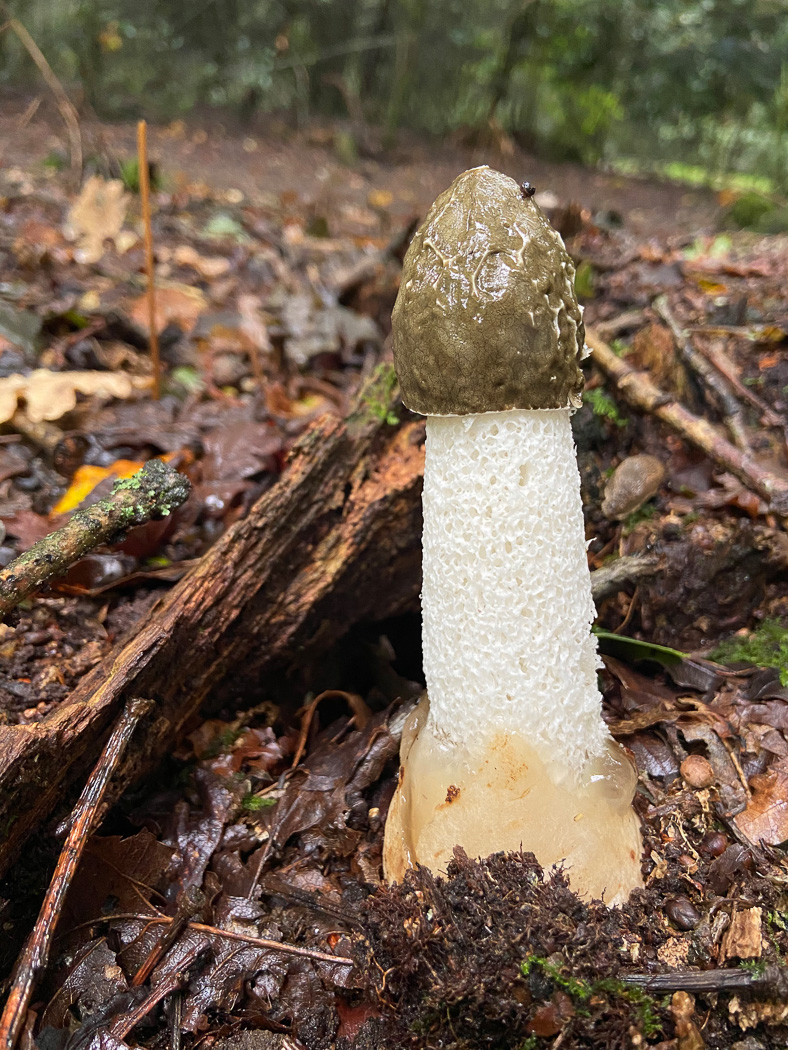
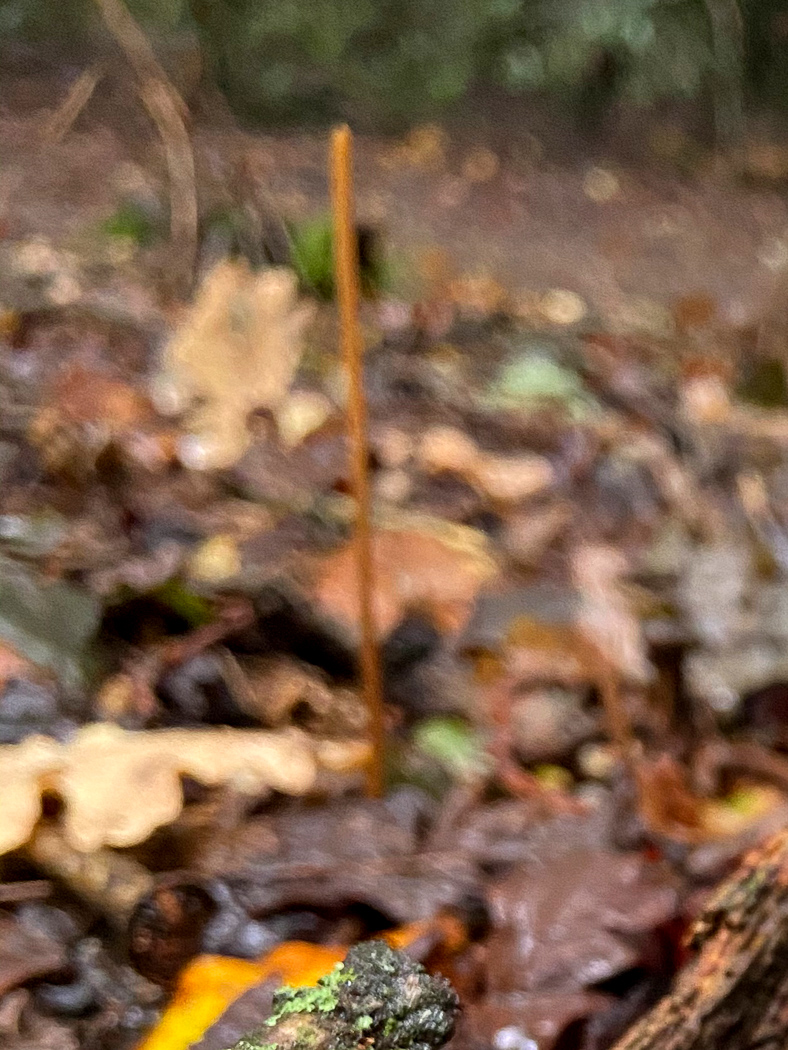 |
October 8th Phallus impudicus (Stinkhorn)
Sarah Ebdon found this perfect specimen in woody litter in Naphill Common. Note the remains of the egg-like sac still at the base, from which the stem is still emerging. Note also the slimy olive greeny brown top which has a (to us) disgusting smell with which to attract insects of many kinds. The insects then consume this part and in doing so spread the spores for the fungus. The sharp eyed amongst you will notice the insect doing just this to the right of the top. The even sharper eyed amongst you might be able to pick out another completely different fungus (which Sarah wasn't aware of) in the photo! So I’ve enlarged the rather blurred but clearly recognisable shape of Macrotyphula fistulosa (Pipe Club) which is off to the left off the Stinkhorn.
|
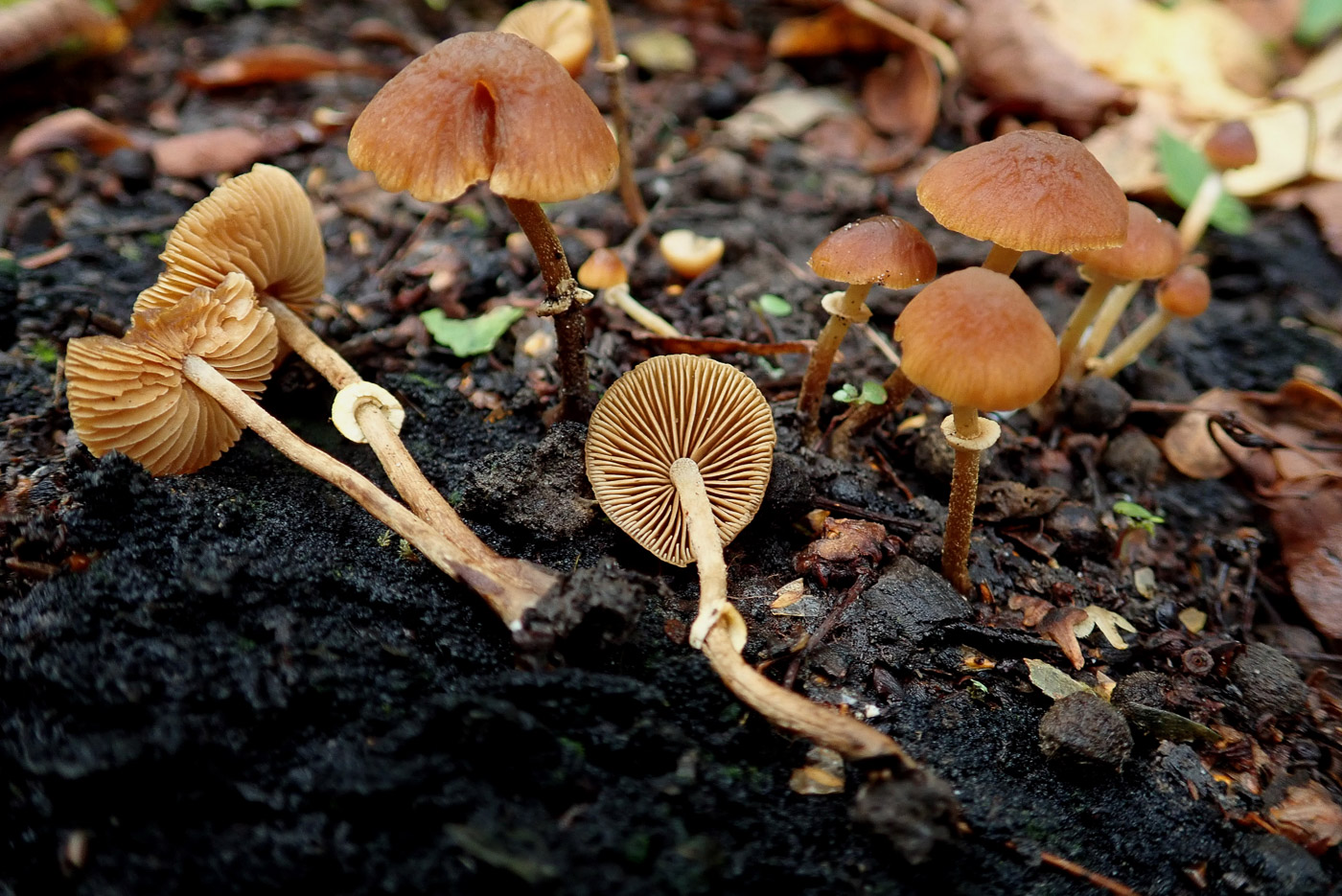
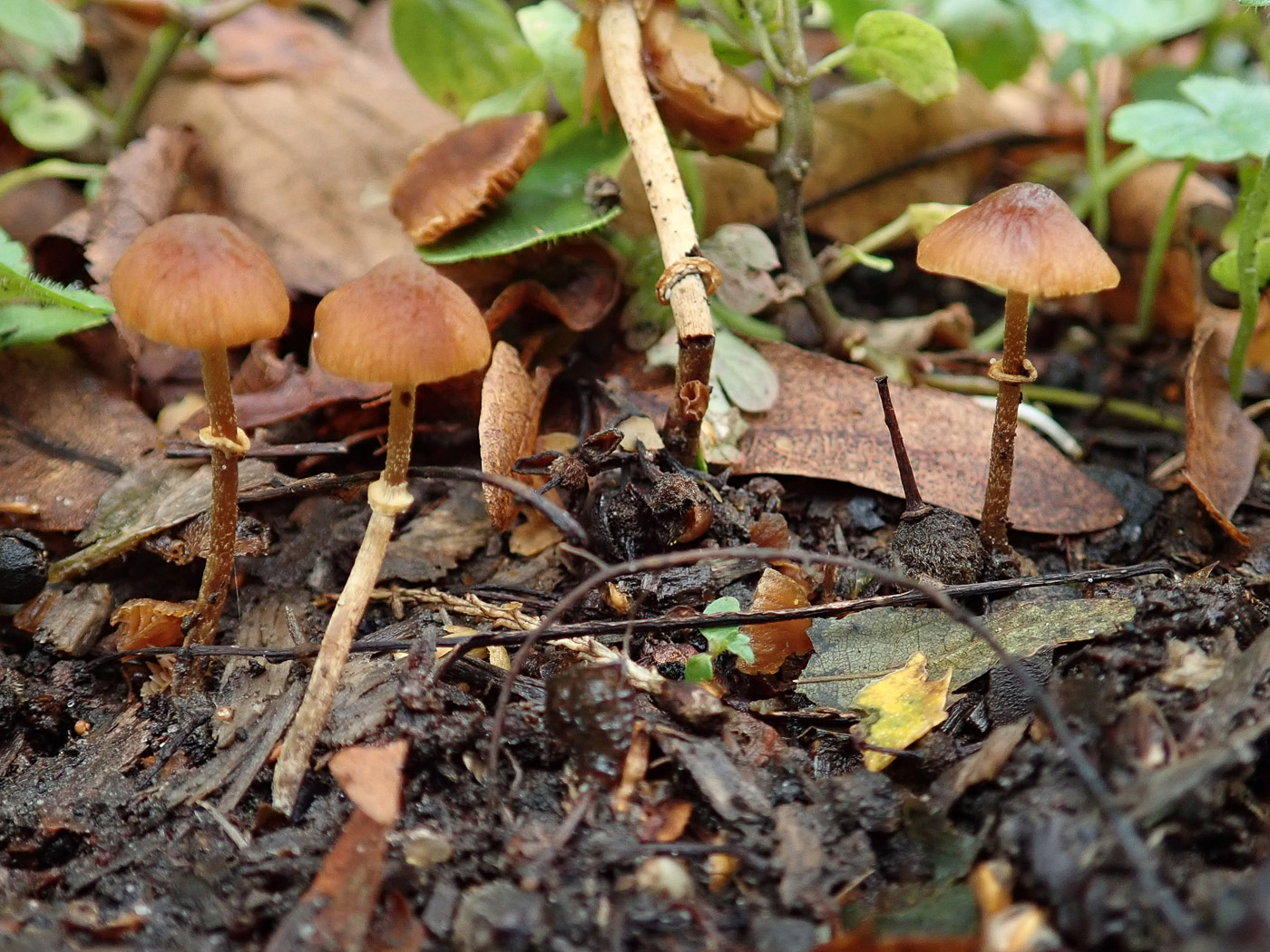 |
October 8th Pholiotina rugosa (a species of ringed Conecap) 
Penny Cullington found this collection on a rotting woodchip pile at Turville Heath. The large genus of Conocybe (Conecap) is a typical LBJ genus (Little Brown Jobs) mostly having shiny conical bright brown caps under 2 cms across. A few of them have a ringed stem (as our species today) and have recently been split off to form the genus Pholiotina. Superficially similar to Tubaria furfuracea (dated Oct 03) amongst other LBJs, the ring immediately alerts one to the fact that it must belong in Pholiotina, then it's a question if doing the microscopy and following a key to determine which species you have.
|
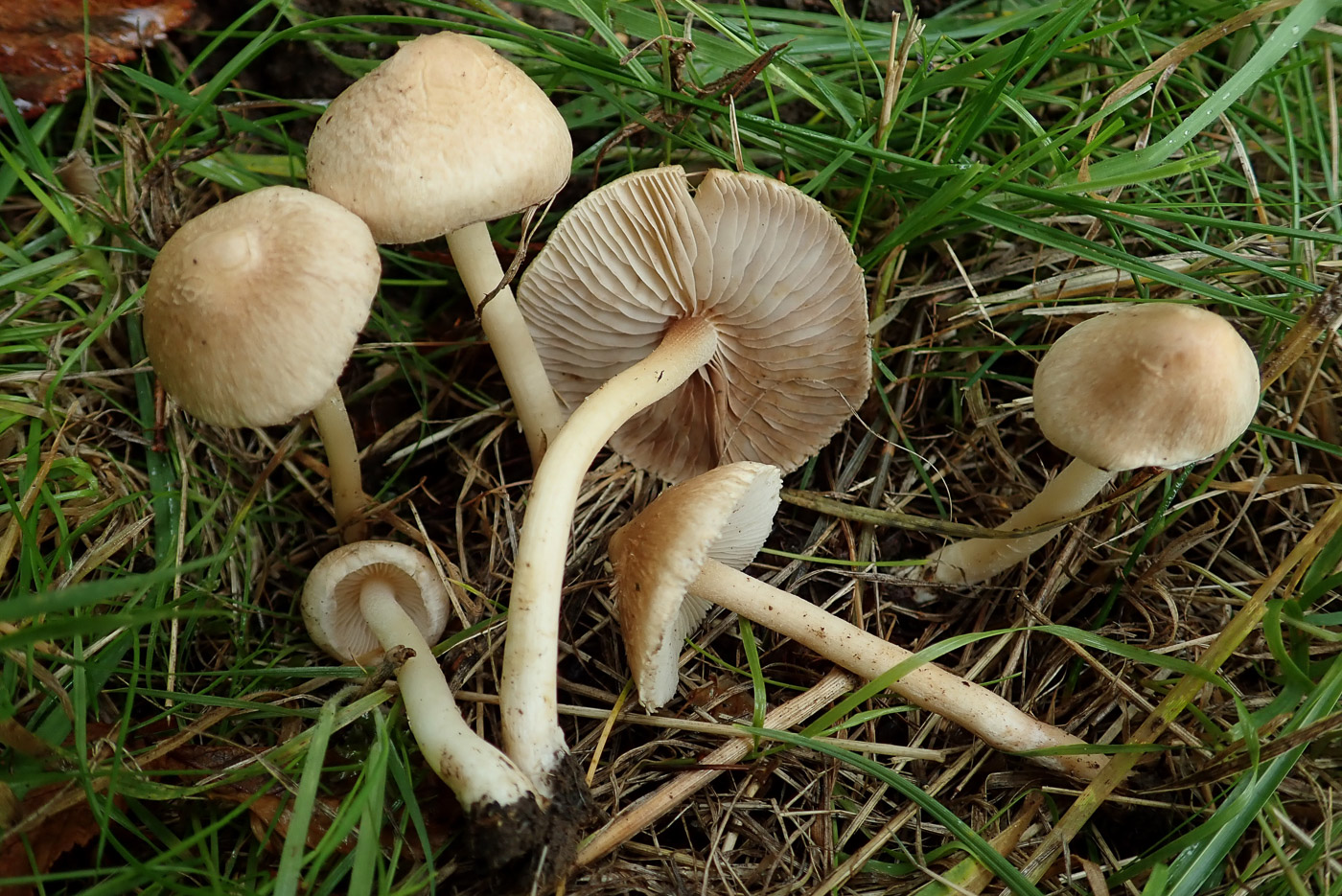 |
October 8th Inocybe sindonia (Beige Fibrecap) 
This collection was found under Lime at Turville Heath by Penny Cullington. Despite its common name, there are quite a few Fibrecaps with similar coloured caps, so even the experienced mycologist should always check with a scope before naming any Inocybe with certainty. It is included here as an example of a pale capped Fibrecap to be compared with our four other species (so far on the list) which have either different coloured caps or if similar then different textures caps.
|
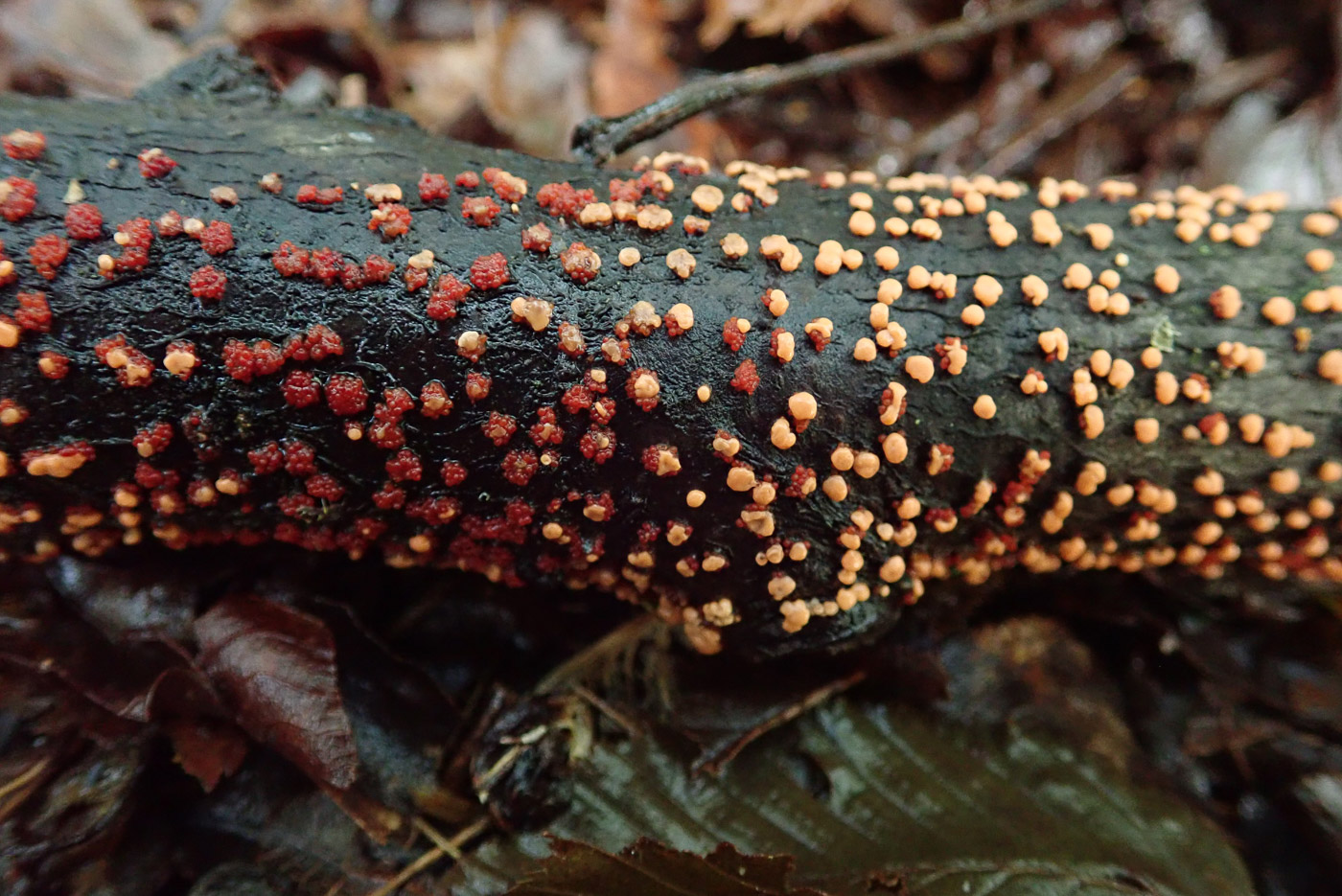 |
October 8th Nectria cinnabarina (Coral Spot)
This is one of the easiest Ascomycetes to recognise, found by Penny Cullington at Turville Heath on various deciduous sticks. Seen here are two stages of development: first the pale smooth-topped conidia stage, followed by the final darker reddish stage which produces the spores. Each blob is less than 5mm across. Very common on wood piles and sticks, particularly on Beech and Sycamore.
|
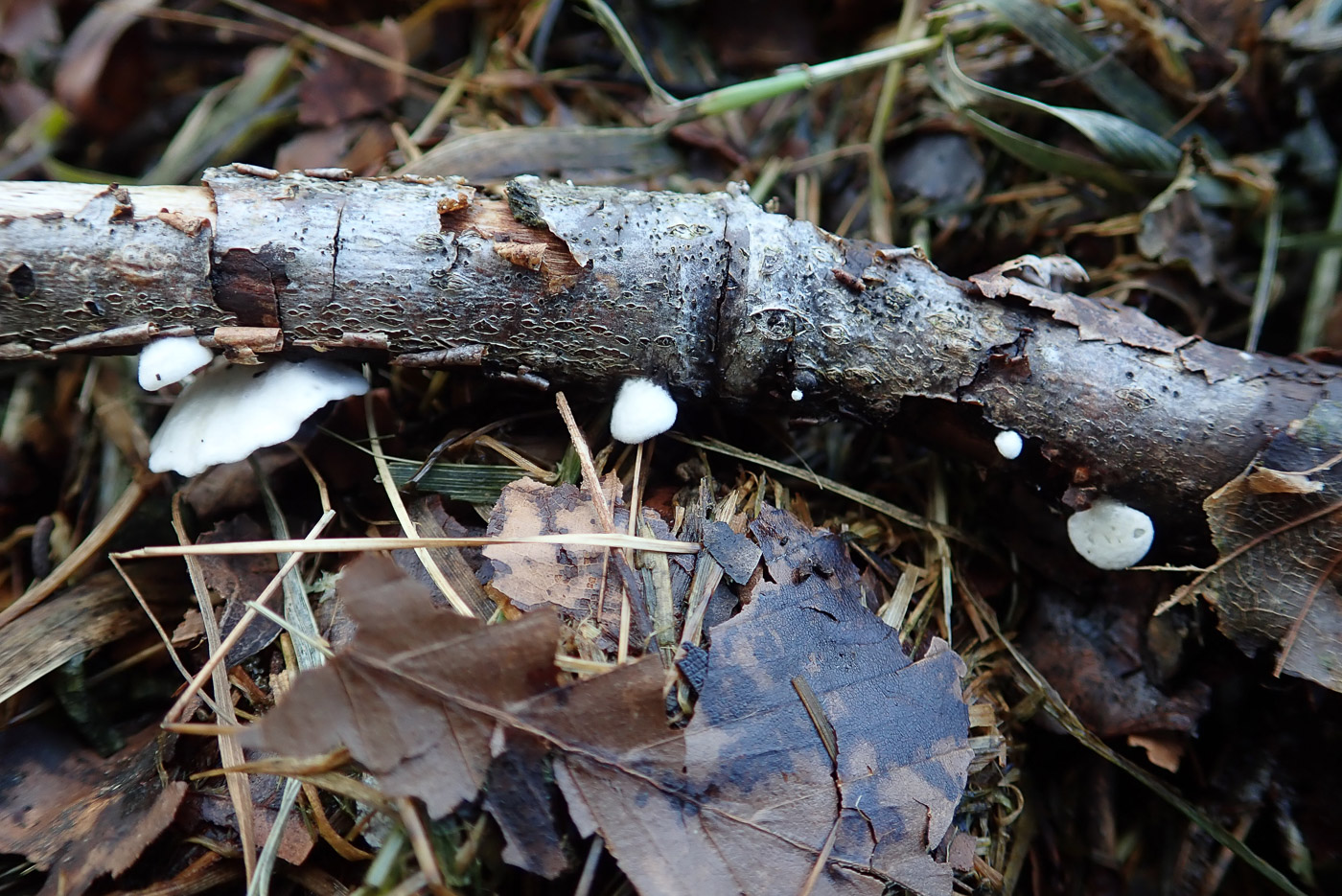
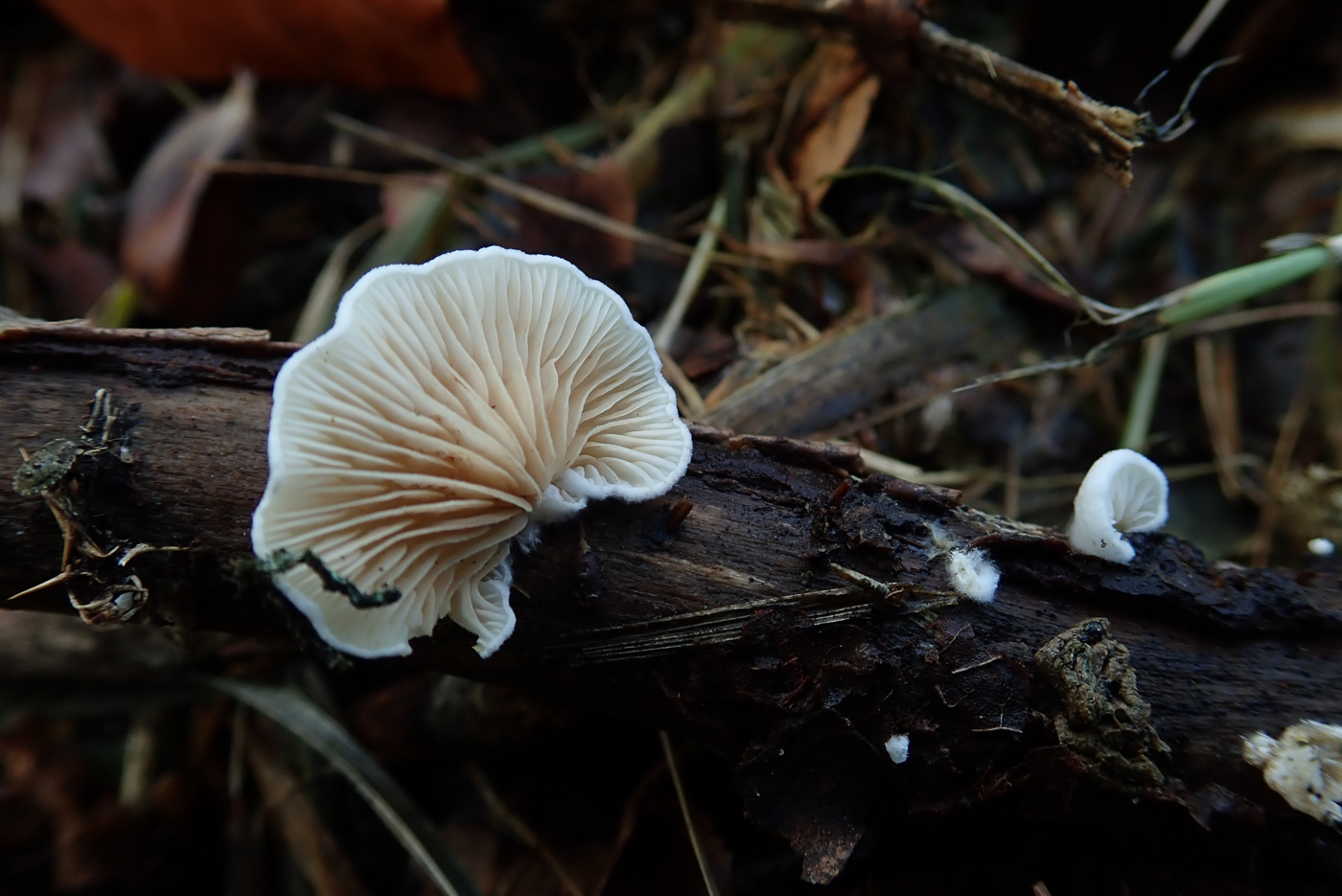 |
October 8th Crepidotus cesatii (Roundspored Oysterling) 
This small species was found on a Beech stick at Turville Heath by Penny Cullington. The largest cap (on the left) was about 1.5 cm across - an average size for the species which is superficially almost identical to several others and cannot be identified with certainty without checking the spores. The genus is common on twigs, herbaceous stems, woody debris and easy to recognise by the white shell-shaped caps with pinkish to rusty gills and virtually no stem to speak of.
|
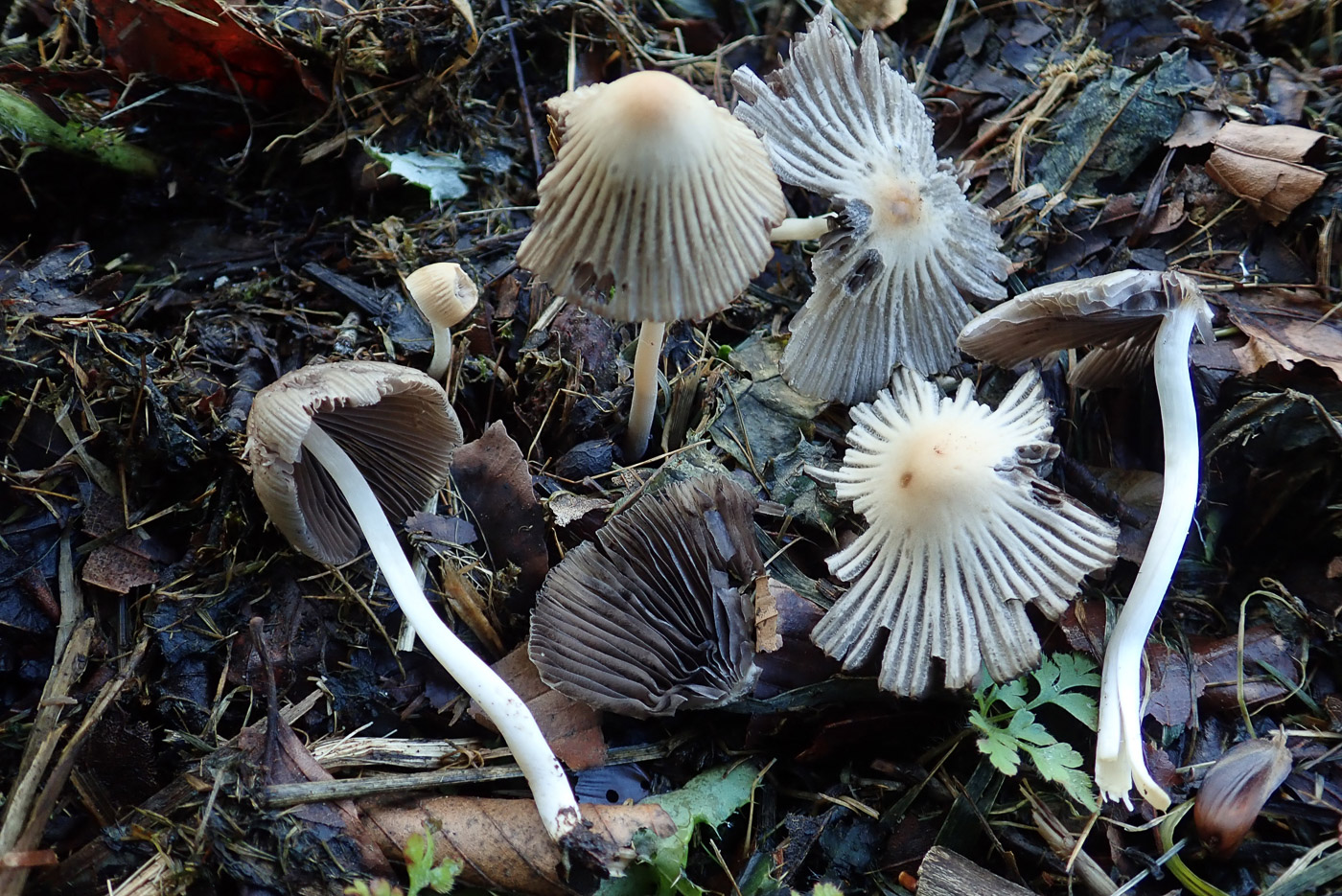 |
October 8th Coprinellus hiascens (an Inkcap with no common name)
Penny Cullington found this collection growing in rotting grassy litter at Turville Heath. There are many Inkcaps which look very similar to this species, therefore a scope is always necessary to confirm the identification  (in fact Penny thought this was probably a different species till the spores and cells on the cap were checked at home later). It is included here as an example of this type of Inkcap. (in fact Penny thought this was probably a different species till the spores and cells on the cap were checked at home later). It is included here as an example of this type of Inkcap.
|
October 7th 2020
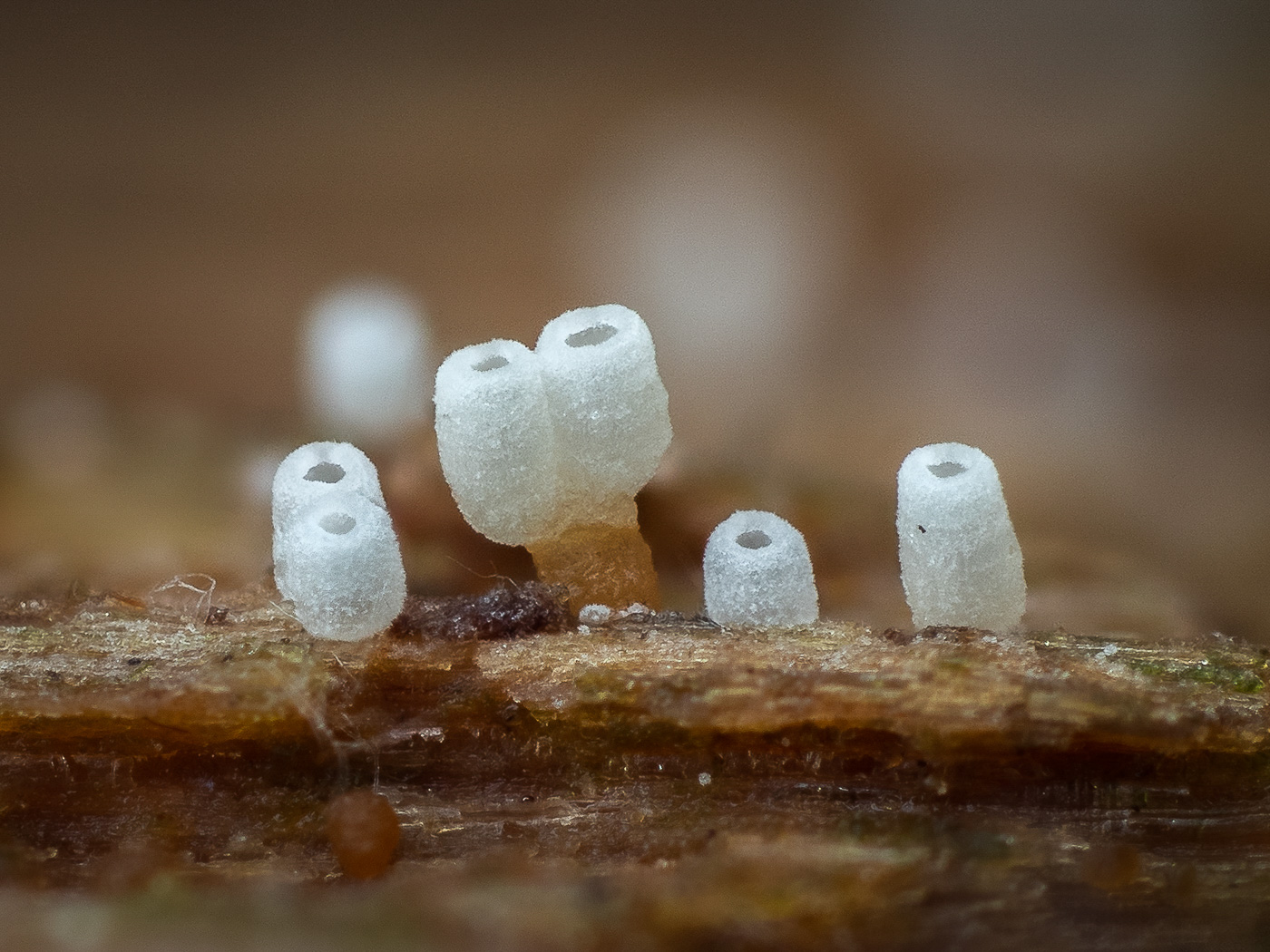 |
October 7th Henningsomyces candidus (White Tubelet)
Barry Webb focuses (literally!) on Slime Moulds but in doing so comes across interesting fungi growing on the same rotting wood frequented by those organisms. This rare and stunning little species is one of these, found on a piece of dead conifer wood collected from Burnham Beeches and kept in Barry's greenhouse to see what it might produce! The individual tiny tubes are here only about 0.5 mms tall and can get to 1 mm at most, and this amazing photo is a vast improvement on those available on line. It is not an Ascomycete but is a Cyphelloid species, listed together with the brackets etc and appears to be confined to rotting conifer wood. We have just one previous record in the county.
|
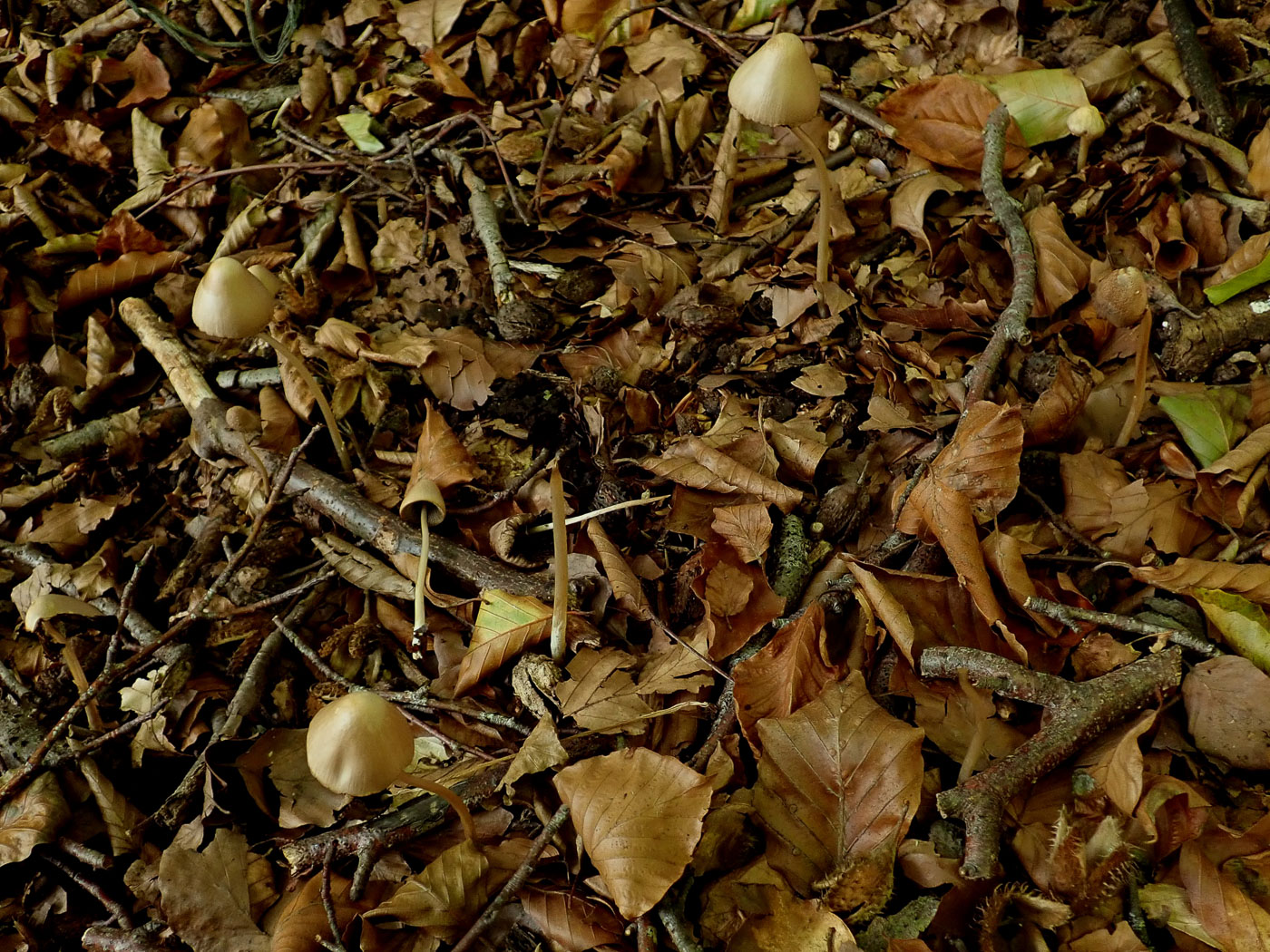
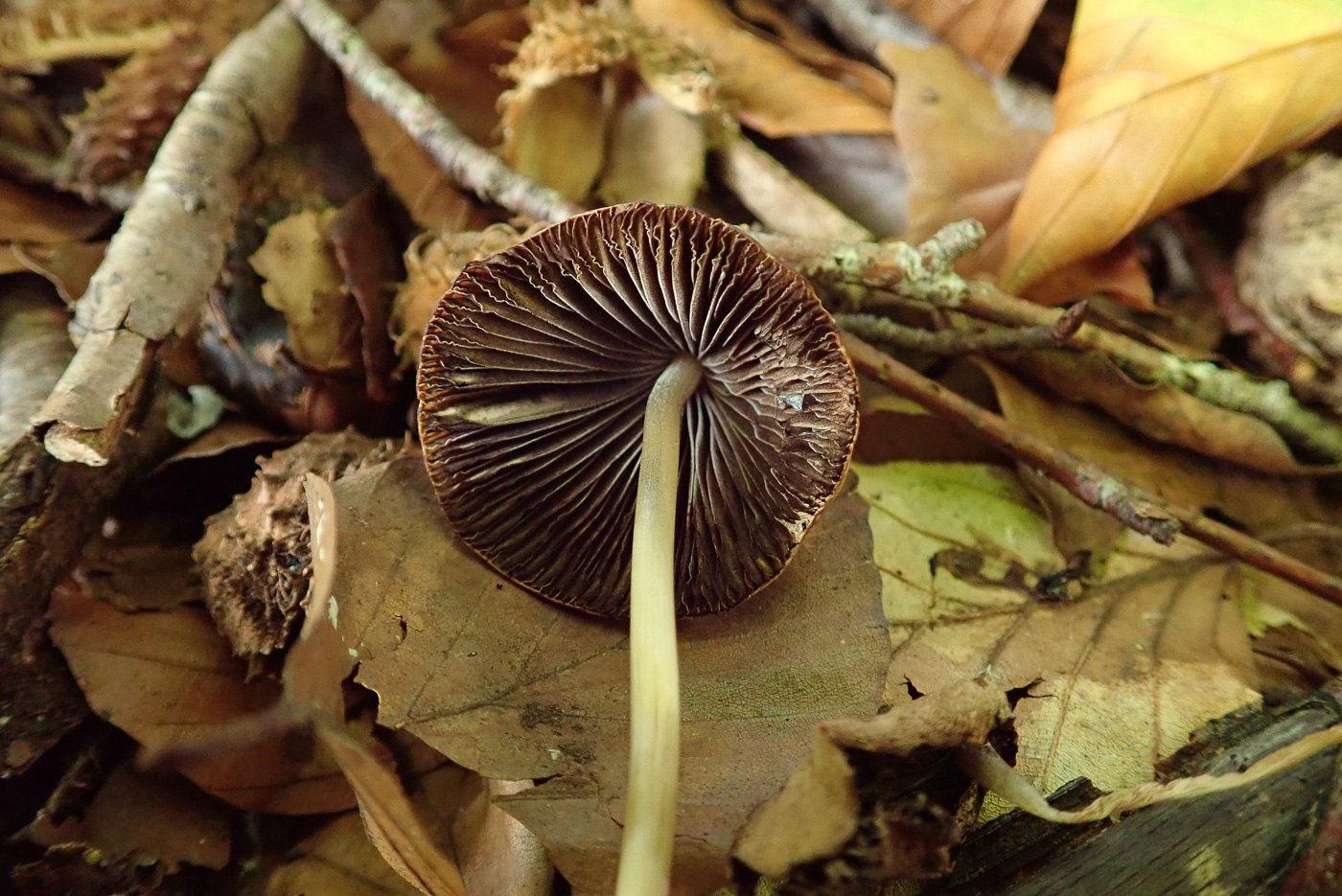 |
October 7th Parasola conopilea (Conical Brittlestem)
Well camouflaged in the Beech litter at Benhams, a private garden near Fawley, was this species (found by Penny Cullington) which has recently moved from the genus Psathyrella, hence its common name of Brittlestem. Sometimes found in sheets on the woodland floor, the tall stems and conical caps are distinctive. One should always turn a cap over to check that it has suitable dark gills and is not, for instance a species of Mycena for which it could possibly be mistaken.
|
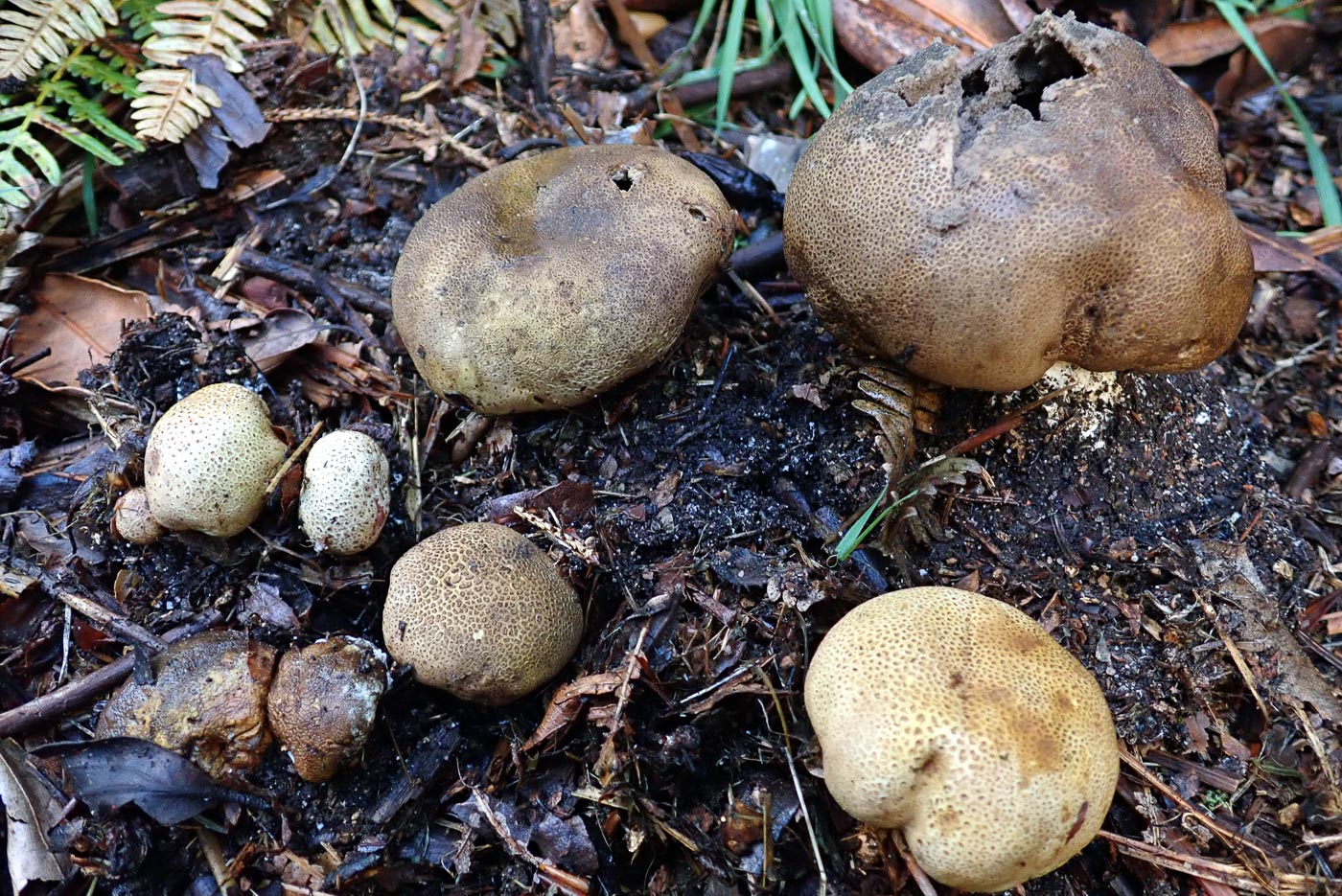
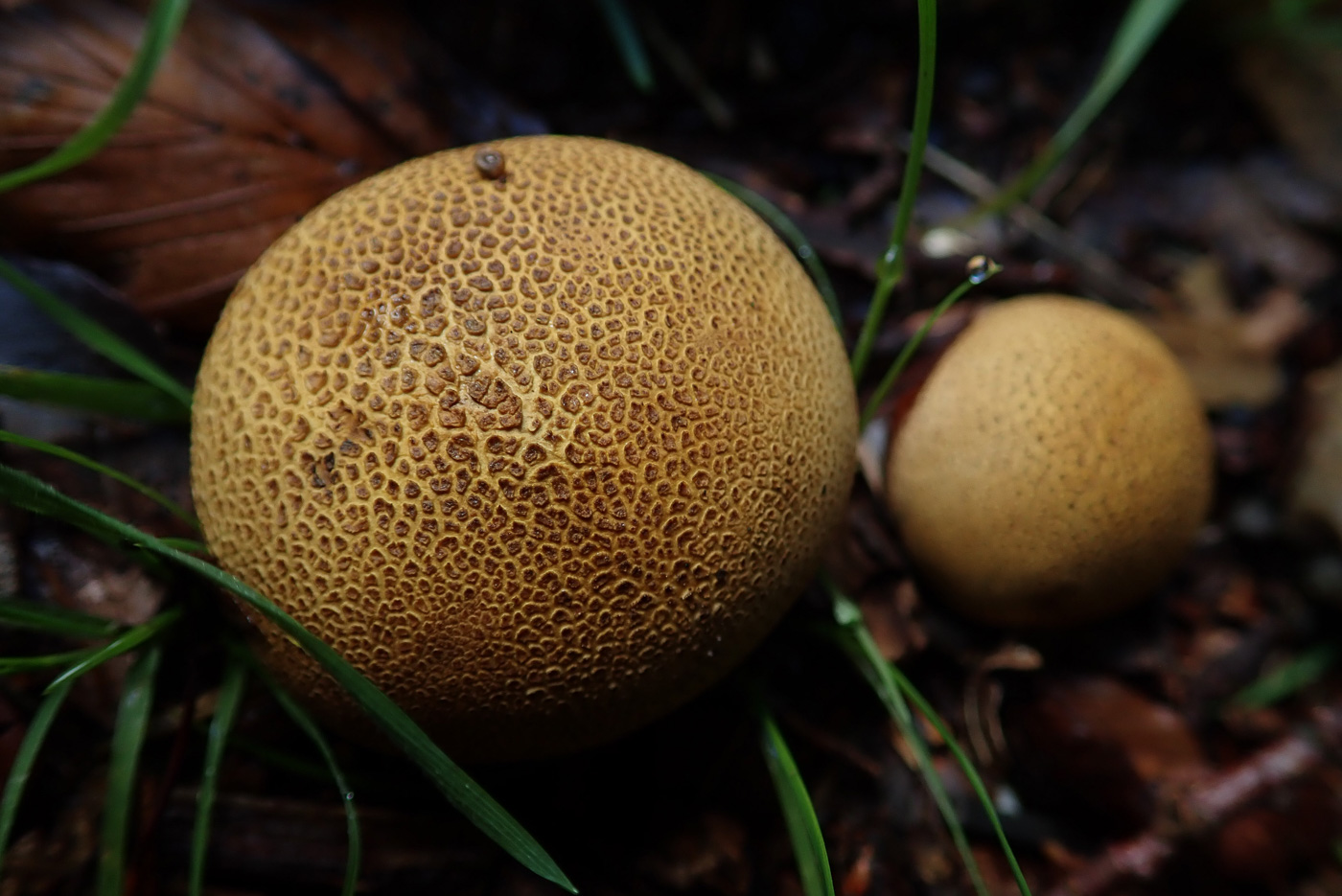 |
October 7th Scleroderma areolatum (Leopard Earthball)
This collection of Earthballs was found by Penny Cullington in soil near Oak in Benhams, a private garden near Fawley. Our fourth Earthball species, not as common as S. citrinum or S. verrucosum, this species has a shorter stem than the very similar S. verrucosum and has a more regular patterned surface reminiscent of a leopard's markings, though the safest way to split the two species is to compare the spore size and ornamentation (not done today because both Penny and Richard Fortey felt confident in the field). Mycologists often disagree over splitting these two just from sight, however, so the determination here is not 100%.
|
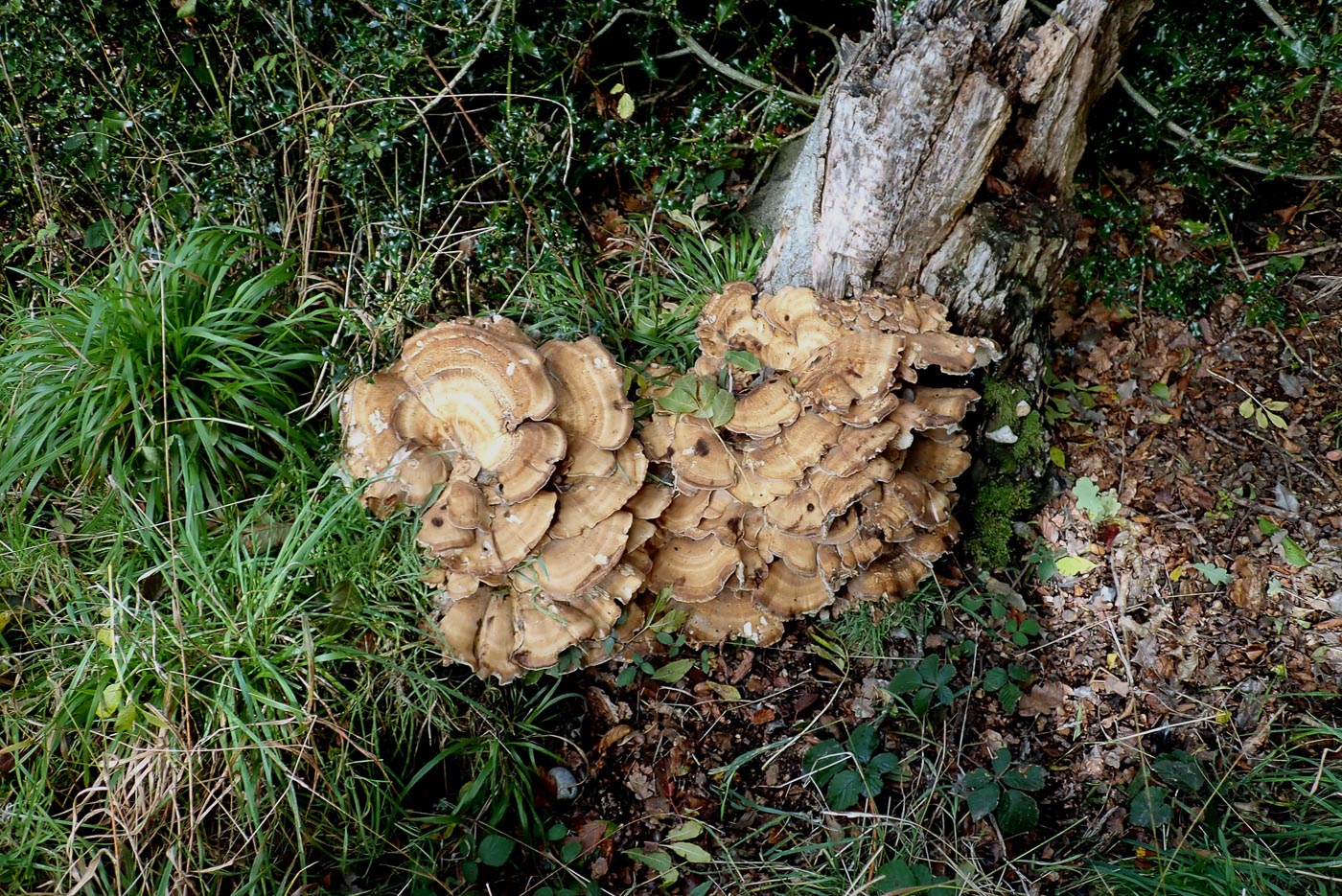
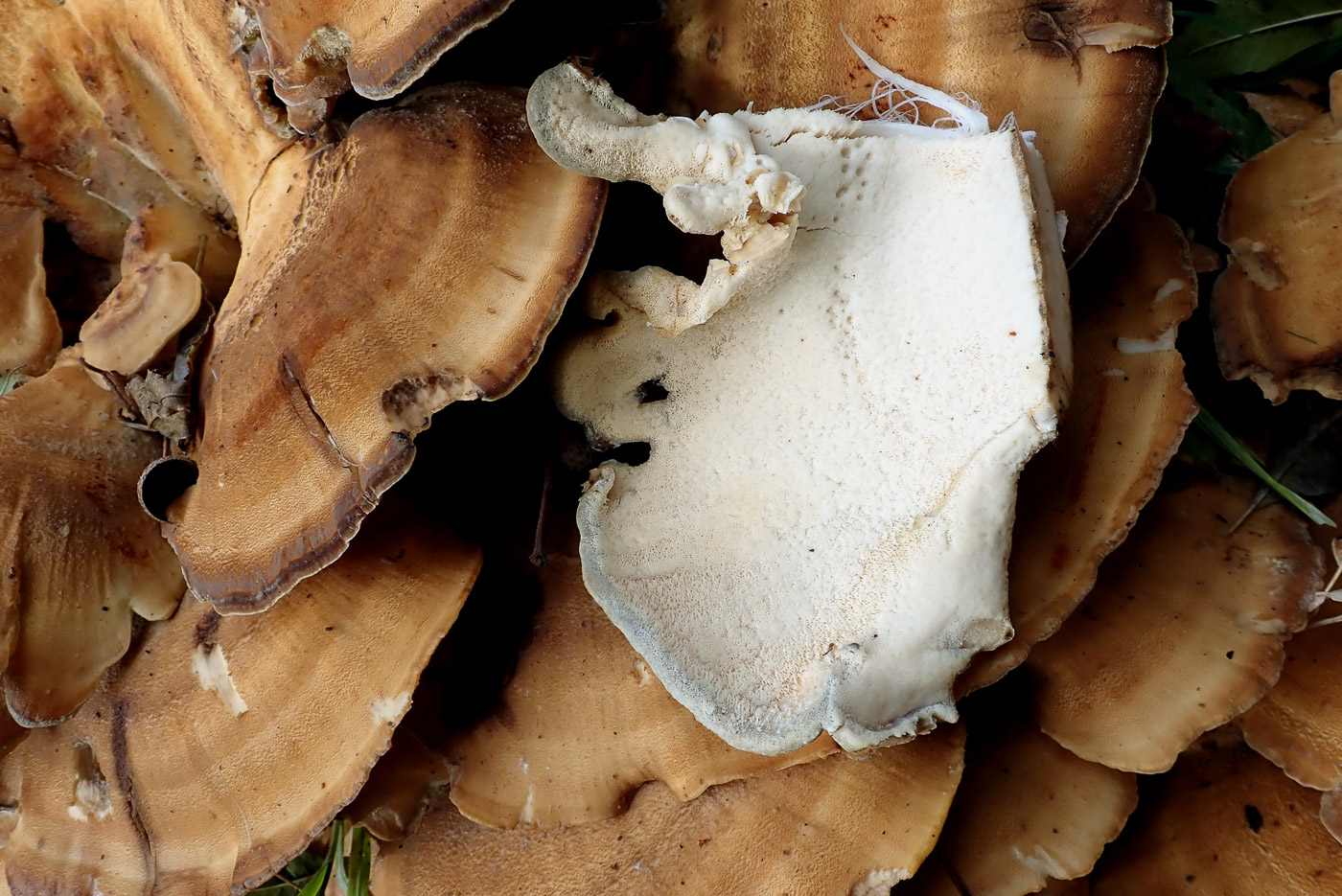
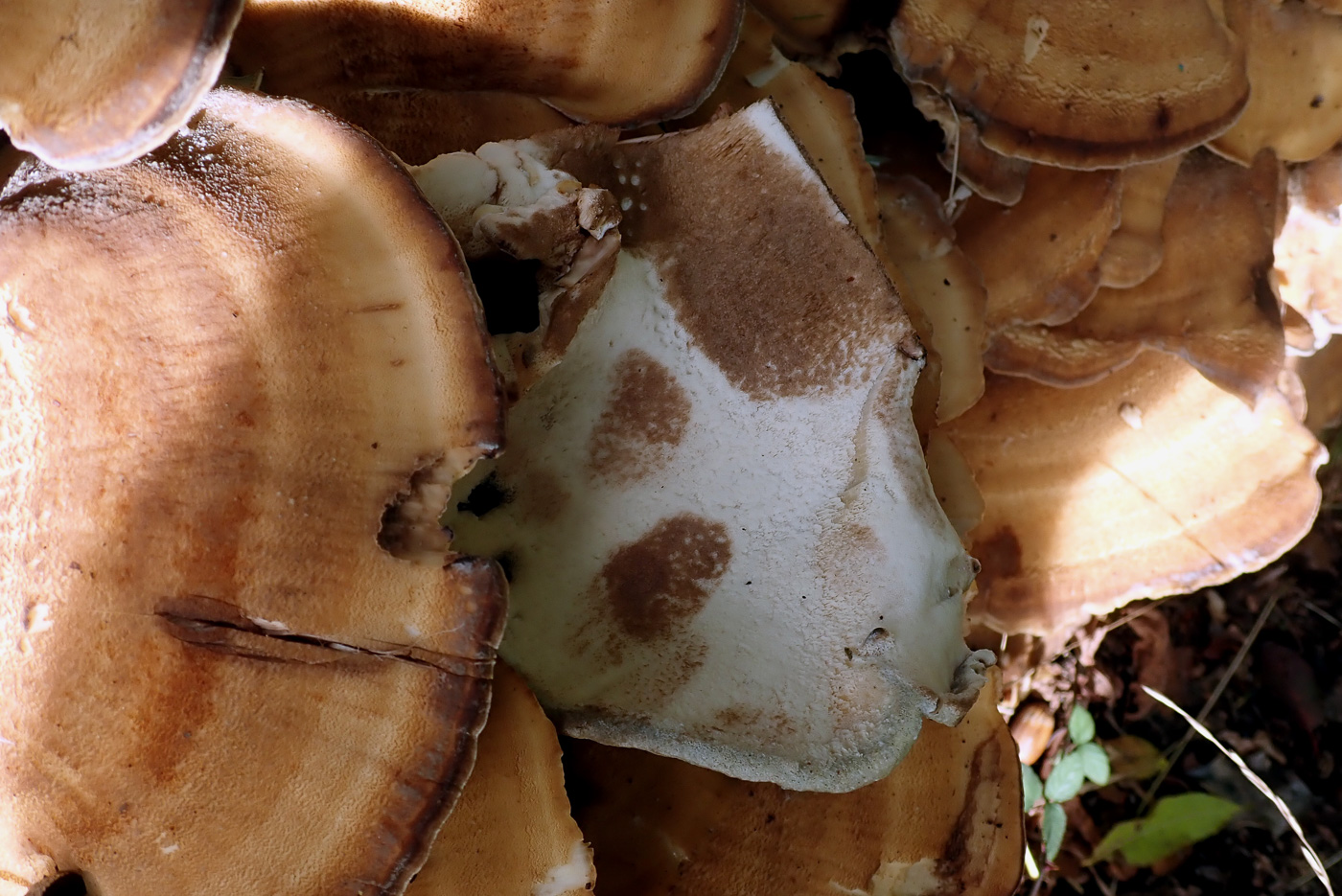 |
October 7th Meripilus giganteus (Giant Polypore)
Surely the largest fungal species in the country, this spread of tiers (more than 2 ft across so relatively small for the species) was at the base of an old Beech stump in Benhams, a private garden near Fawley, found by Penny Cullington. Note the pale cream fine pores of the underside visible in photo 2 which after an hour or so had started to turn dirty brown (see photo 3) and would eventually turn black. This colour change to the bruised pores is diagnostic of the species though there can be little doubt over identity once it has grown to this sort of size. However, when young and small the blackening can be useful to separate it from Grifola frondosa (see photo dated Sept 26) for which it could be mistaken. It is common and often on or around Beech.
|

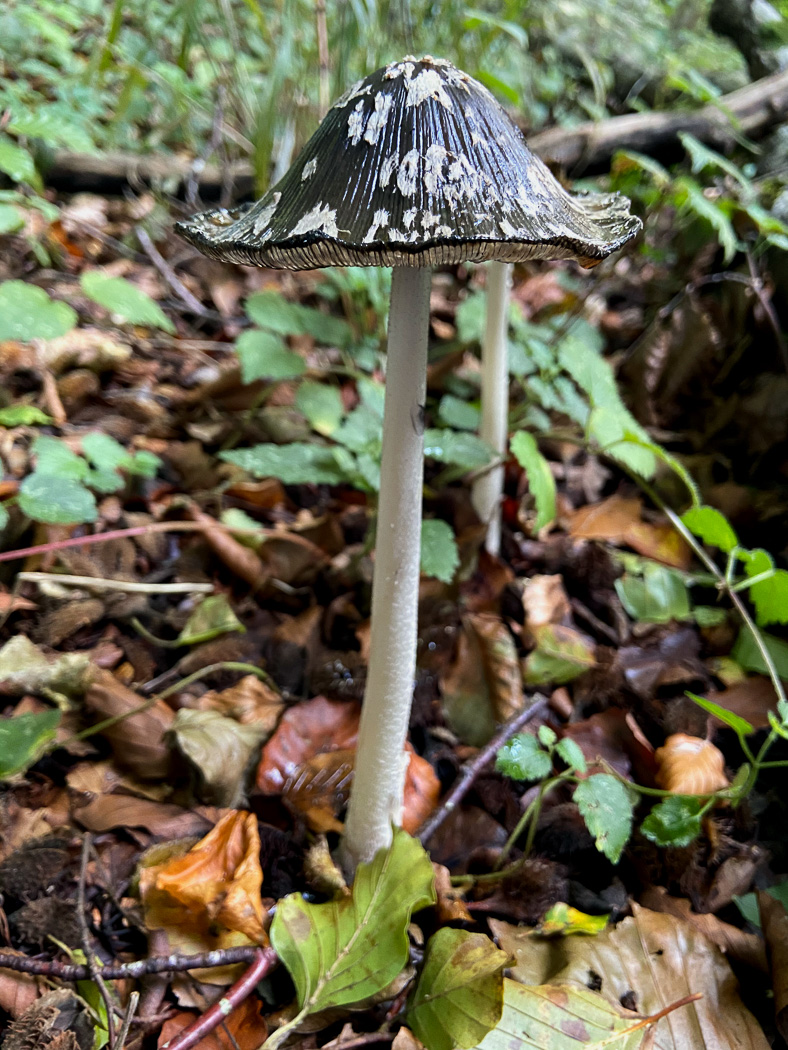 |
October 7th Coprinopsis picacea (Magpie Inkcap)
We do already have an example of this species (dated Sept 15) but Sarah Ebdon's two specimens found in Bradenham Wood are worth including here. See comments on the previous find for more, but note here the tall stem and how the cap edges are curling up to reveal the gills beginning to deliquesce. By the next day there would be nothing remaining except possibly the stem and a black smelly puddle beneath!
|
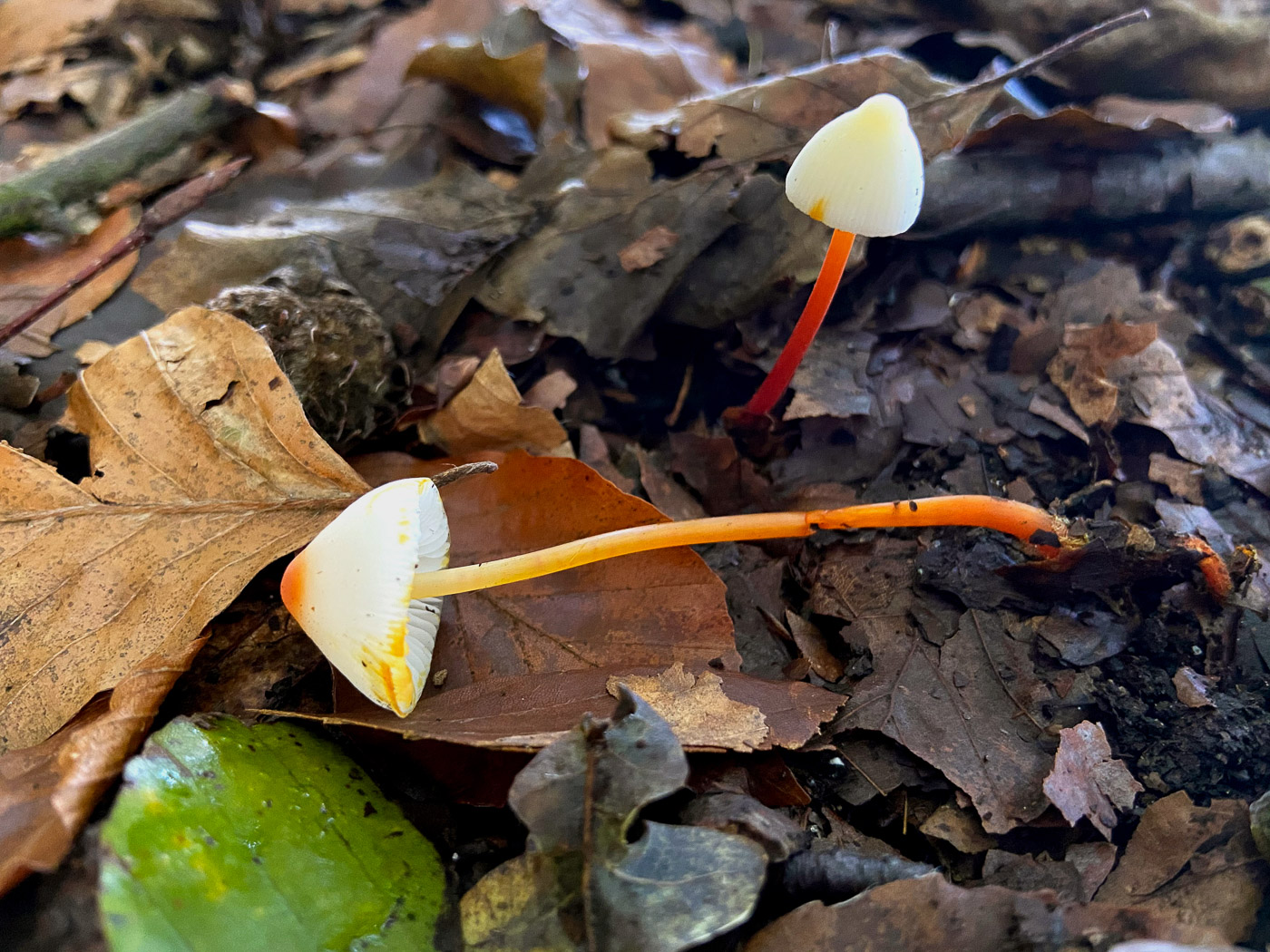
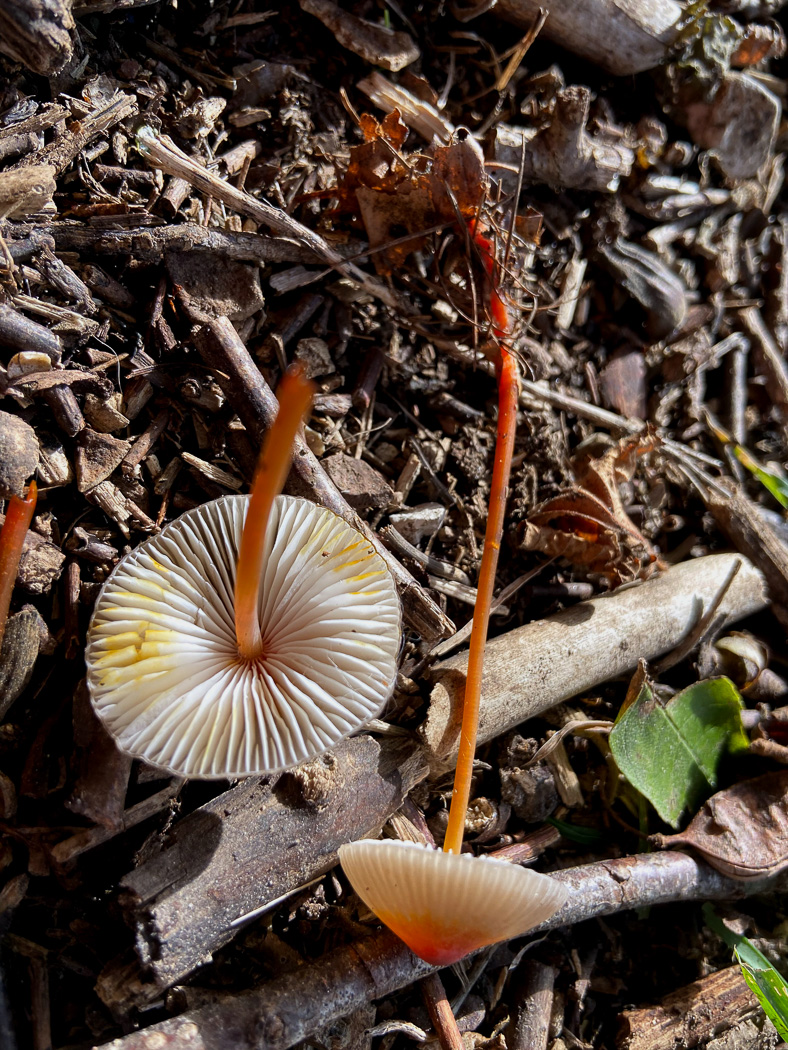
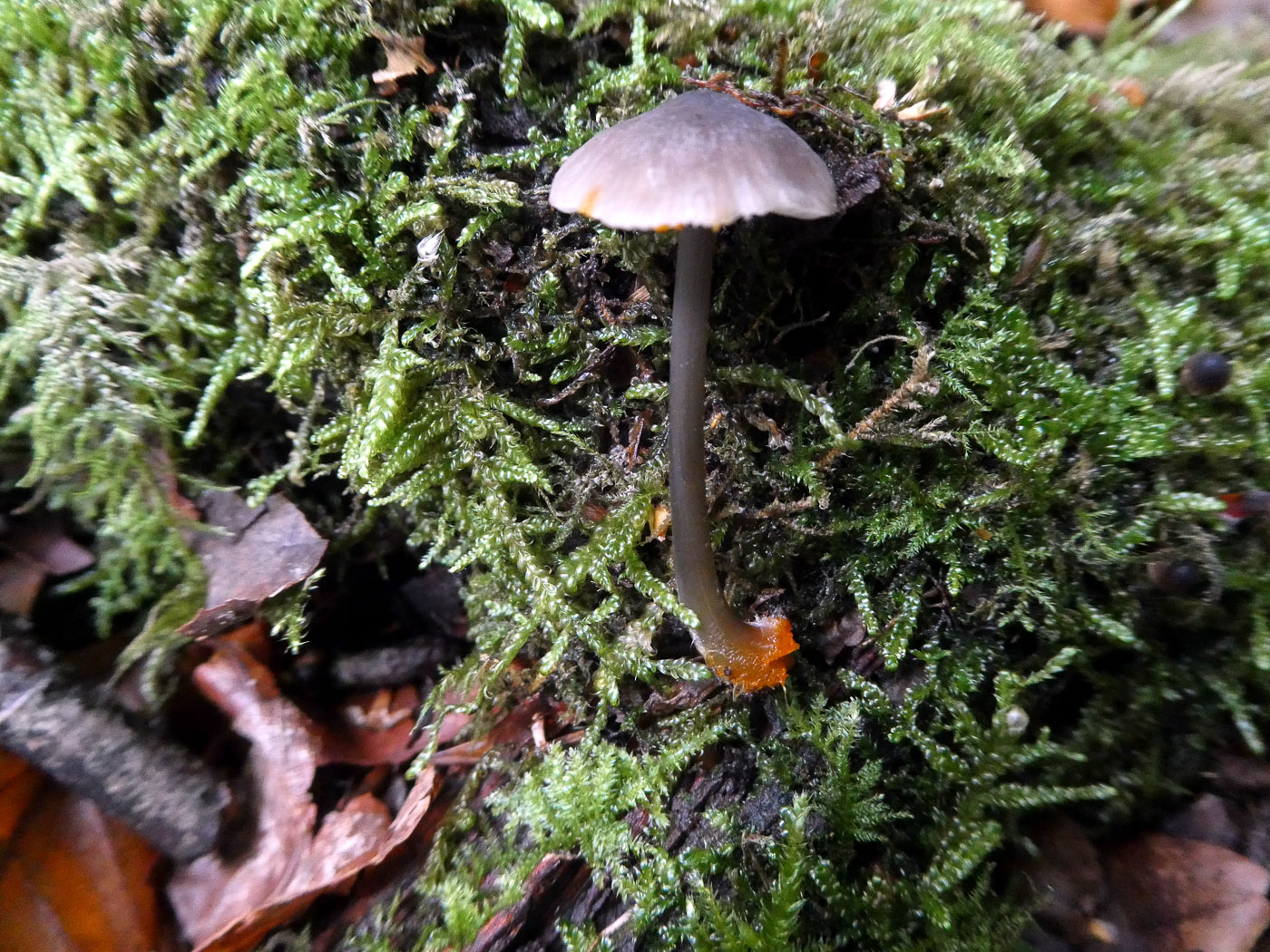 |
October 7th Mycena crocata (Saffrondrop Bonnet)
This particular Bonnet, common in the Chiltern Beech woods, has been hardly seen this season until found here in Bradenham Wood by Sarah Ebdon. It is only found on wood or woody remains of fallen Beech and in other parts of the country is considered rare. If, however, one were to chose a fungus to represent the Chilterns, this would certainly be a contender! Caps can be white, as here, or some shade of brown, even almost black (see photo 3 taken three days later, Penny Cullington), but the telltale feature is the amazingly prolific orange 'juice' which exudes when any part of the fruit body is damaged. Once collected, the stem base often drips with it but also the flesh within bleeds making even the cap and gills tainted as seen in Sarah's excellent photos. Do not confuse with M. haematopus (see photo dated Sept 07) which also grows on fallen branches but has much darker wine red juice.
|
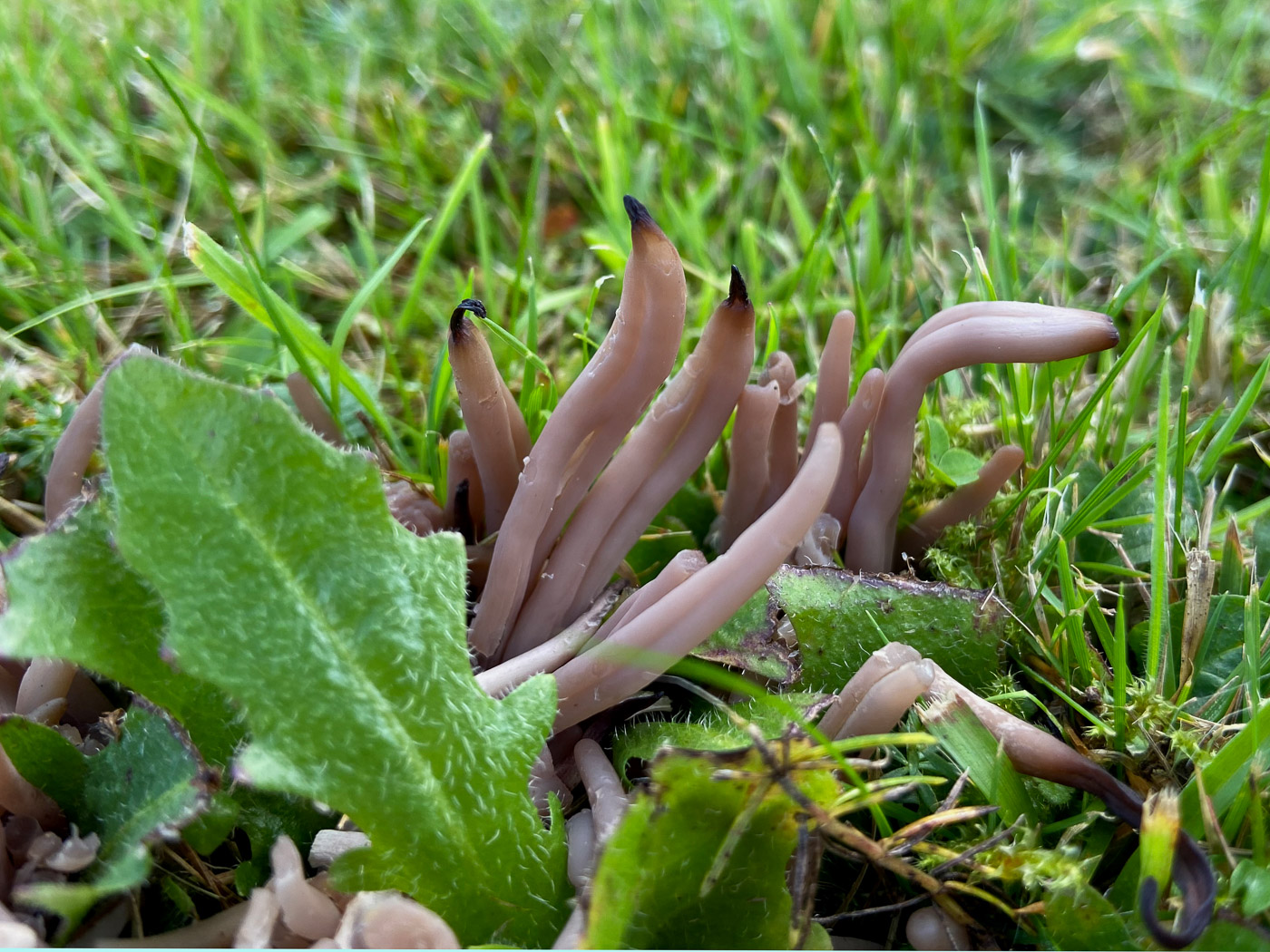 |
October 7th Clavaria fumosa (Smokey Spindles)
Sarah Ebdon found this quite rare grassland fungus in Bradenham Churchyard. We have just two other known sites in the county for this species; it is similar to several other yellow spindles and clubs, but its colour quickly separates it though it seems to vary, ranging from mouse grey to cream or with a pink tinge as here.
|
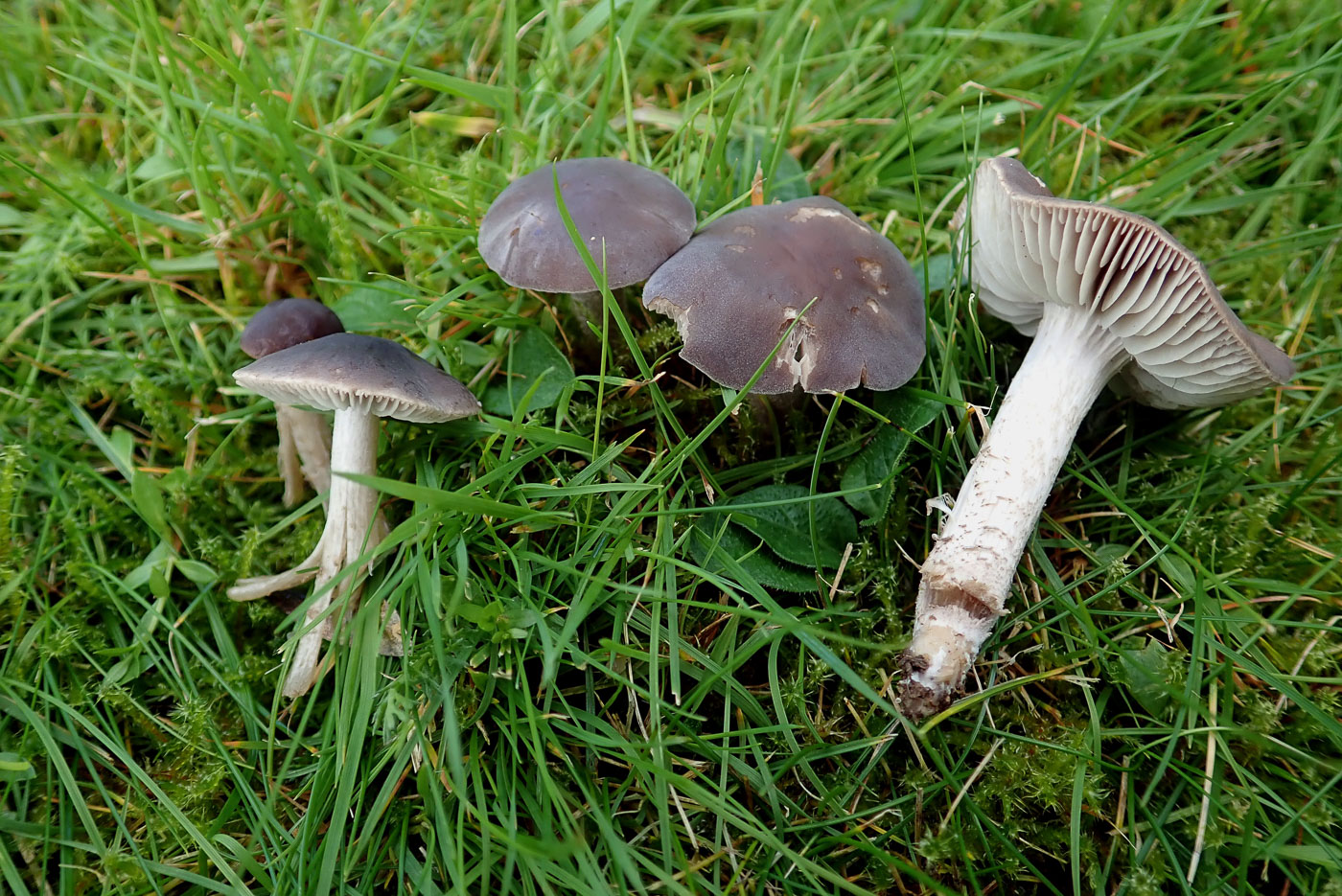 |
October 7th Dermoloma cuneifolium (Crazed Cap)
Also on the lawn at Benhams, a private garden near Fawley, this common grassland species was found by Penny Cullington. Superficially similar to a waxcap, it has a dry cap and stem and the cap, domed and dark grey brown to start with, fades and flattens, often cracking. The gills are white and markedly convex and brittle - unlike any waxcap - and it has a strong mealy smell (of rancid flour)
|
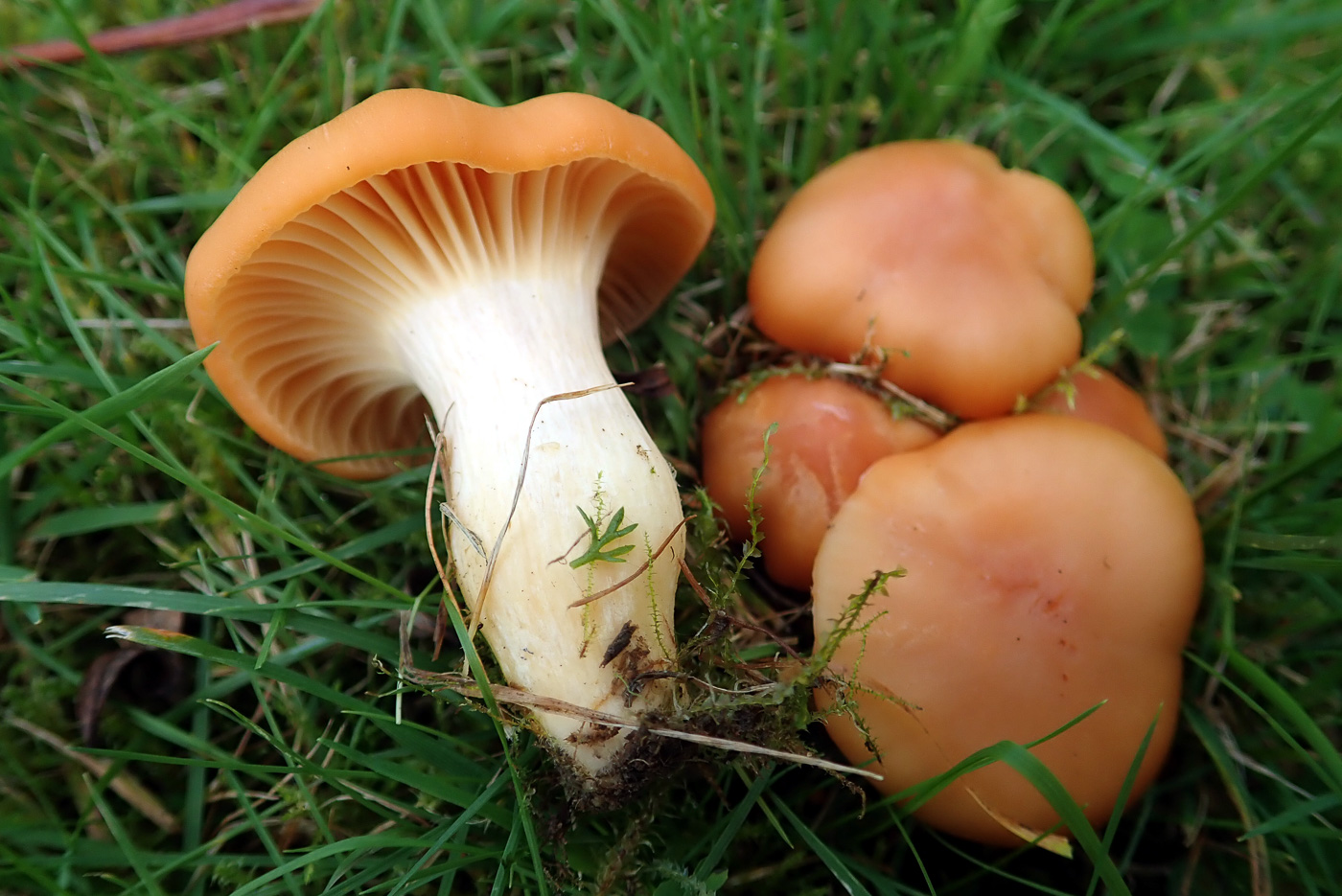 |
October 7th Hygrocybe pratensis (Meadow Waxcap)
This attractive grassland species was found just emerging on the lawn at Benhams, a private garden near Fawley, by Richard Fortey (photo Penny Cullington). Quite a common waxcap and easy to identify: neither cap nor stem are sticky and the gills are widely spaced and strongly decurrent (sloping down the stem).
|
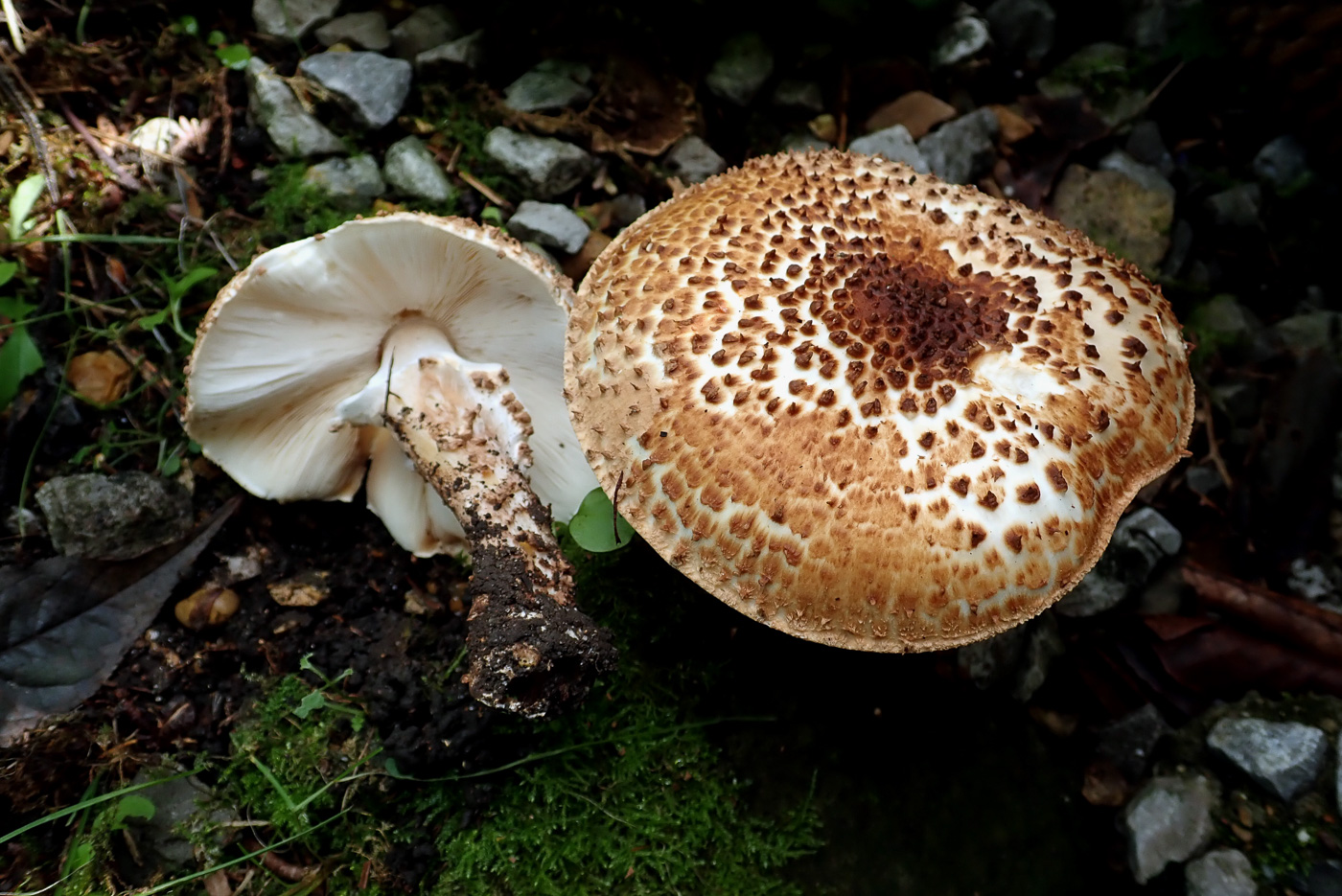 |
October 7th Echinoderma asperum (Freckled Dapperling)
Better known as Lepiota aspera, this impressive and beautiful species was found in a shrub bed at Benhams, a private garden near Fawley, by Richard Fortey (photo Penny Cullington). Note the crowded white gills and skirtlike ring on the stem which often has chestnut brown raised scales like those on the distinctive cap. This quite common species has an unpleasant smell and can get to 10cm across or more. Superficially similar to an Amanita (having a scaly cap, white gills and a prominent ring on the stem) note the lack of volva at the stem base. This species is DANGEROUSLY POISONOUS
|
October 6th 2020
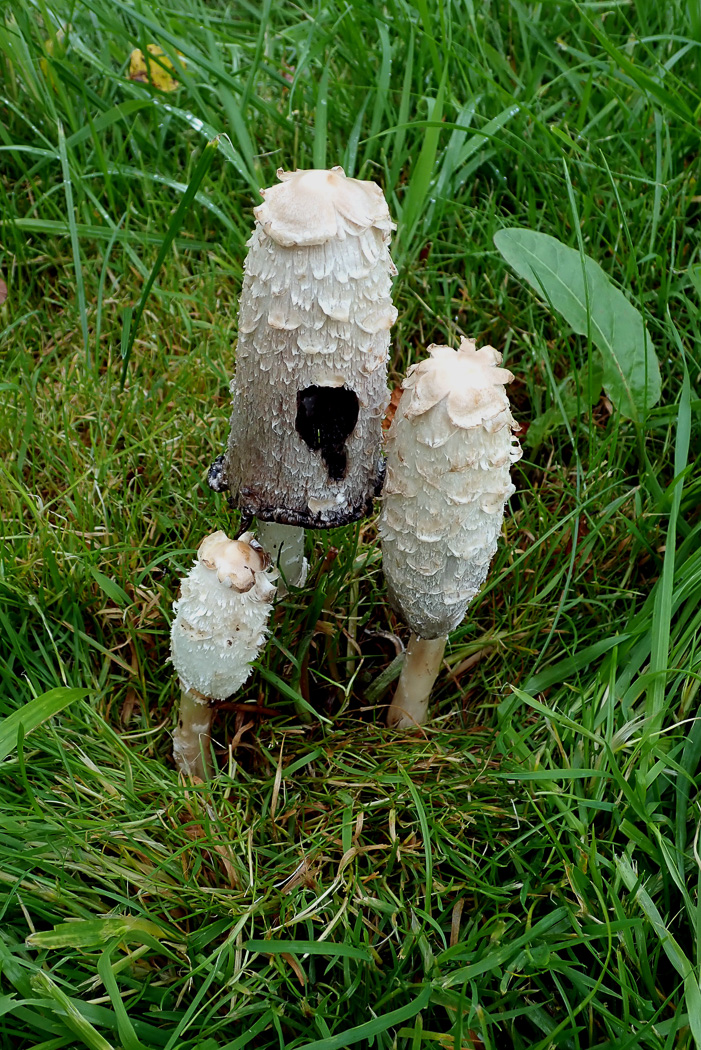
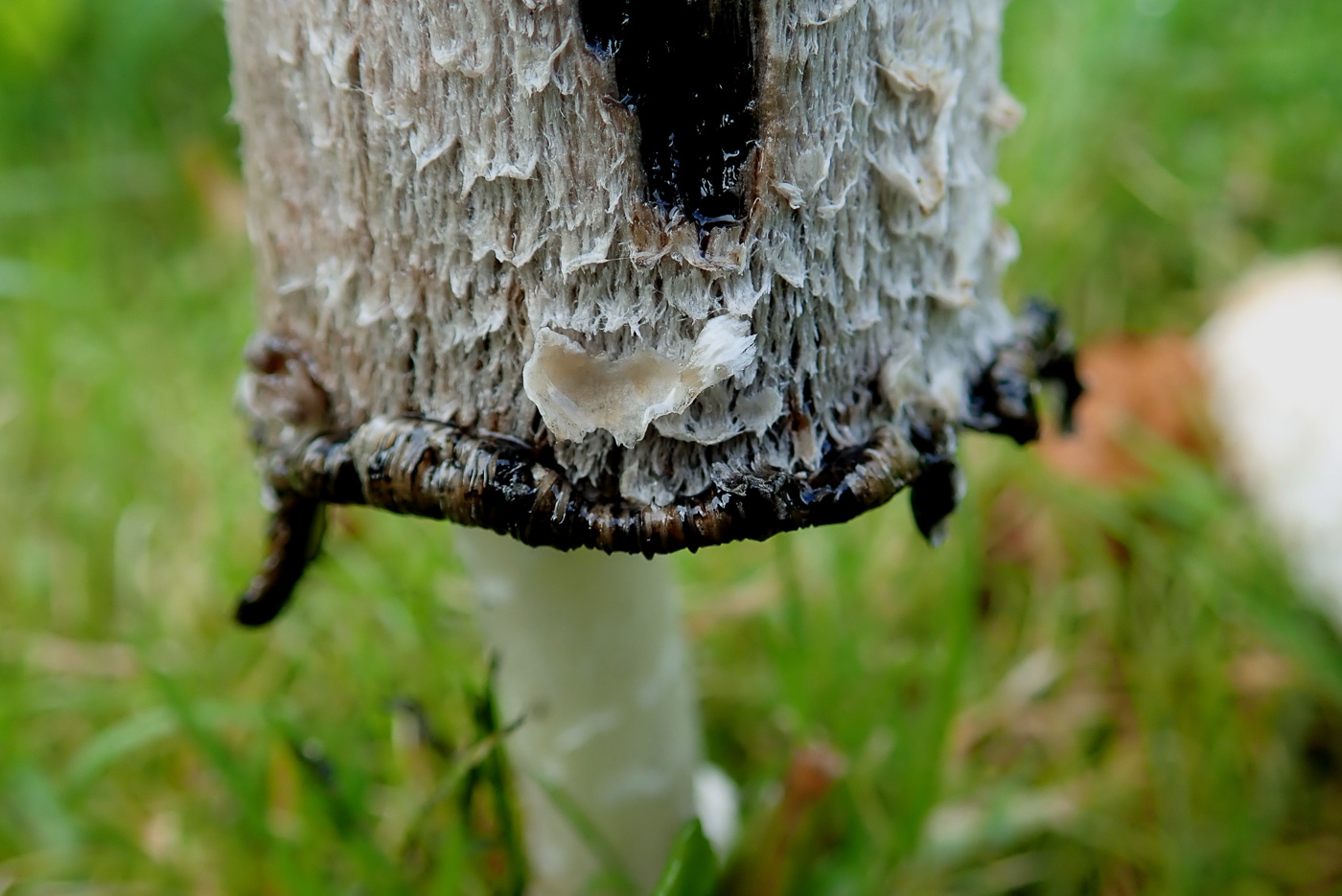 |
October 6th Coprinus comatus (Shaggy Inkcap / Lawyer's Wig)
Joanna Dodsworth found this collection in grass at Wotton Park Estate, photos Penny Cullington. We also have a collection of this very common but attractive Inkcap dated Sept 16 but felt today's was worth including as it shows fruit bodies at different stages of development including the beginnings of deliquescing in the taller specimen (height 12 cm), typical of the genus.
|
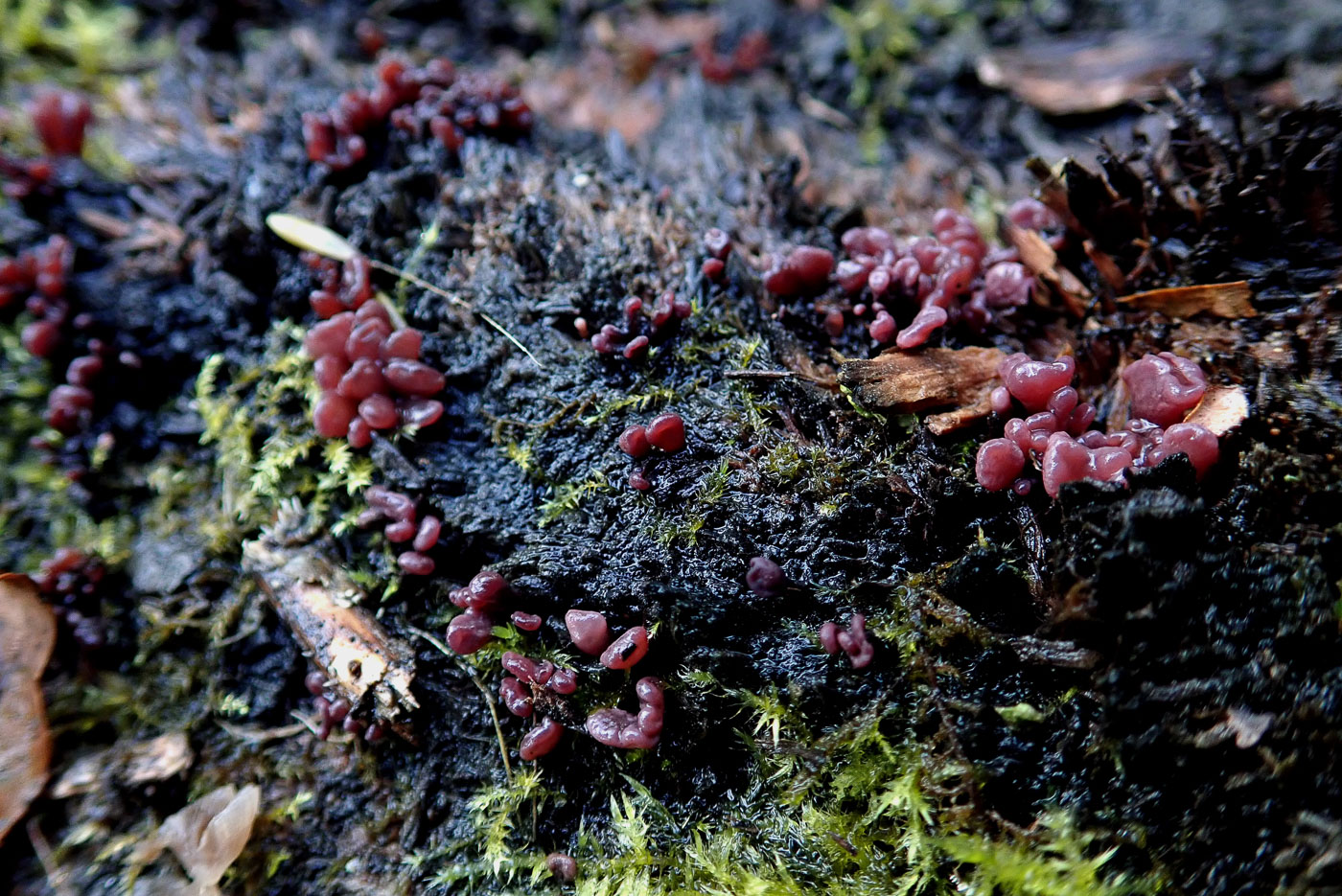 |
October 6th Ascocoryne sarcoides (Purple Jellydisc)
Penny Cullington was surprised to find this species on woody remnants in an old bonfire site at Wotton Park Estate. Conspicuous by its absence so far this season, it is normally one of the commonest Ascomycetes to be found on fallen Beech (a tree hardly present at this site) but can occur on other hardwoods. Only separable with certainty from the almost identical A. cylichnium by its much smaller spores  it is by far the commoner of the two species. Another gelatinous Asco to be aware of but a bit larger and paler is Neobulgaria pura (Beech Jellydisc) though it forms more distinct raised clustered discs than our species today. it is by far the commoner of the two species. Another gelatinous Asco to be aware of but a bit larger and paler is Neobulgaria pura (Beech Jellydisc) though it forms more distinct raised clustered discs than our species today.
|
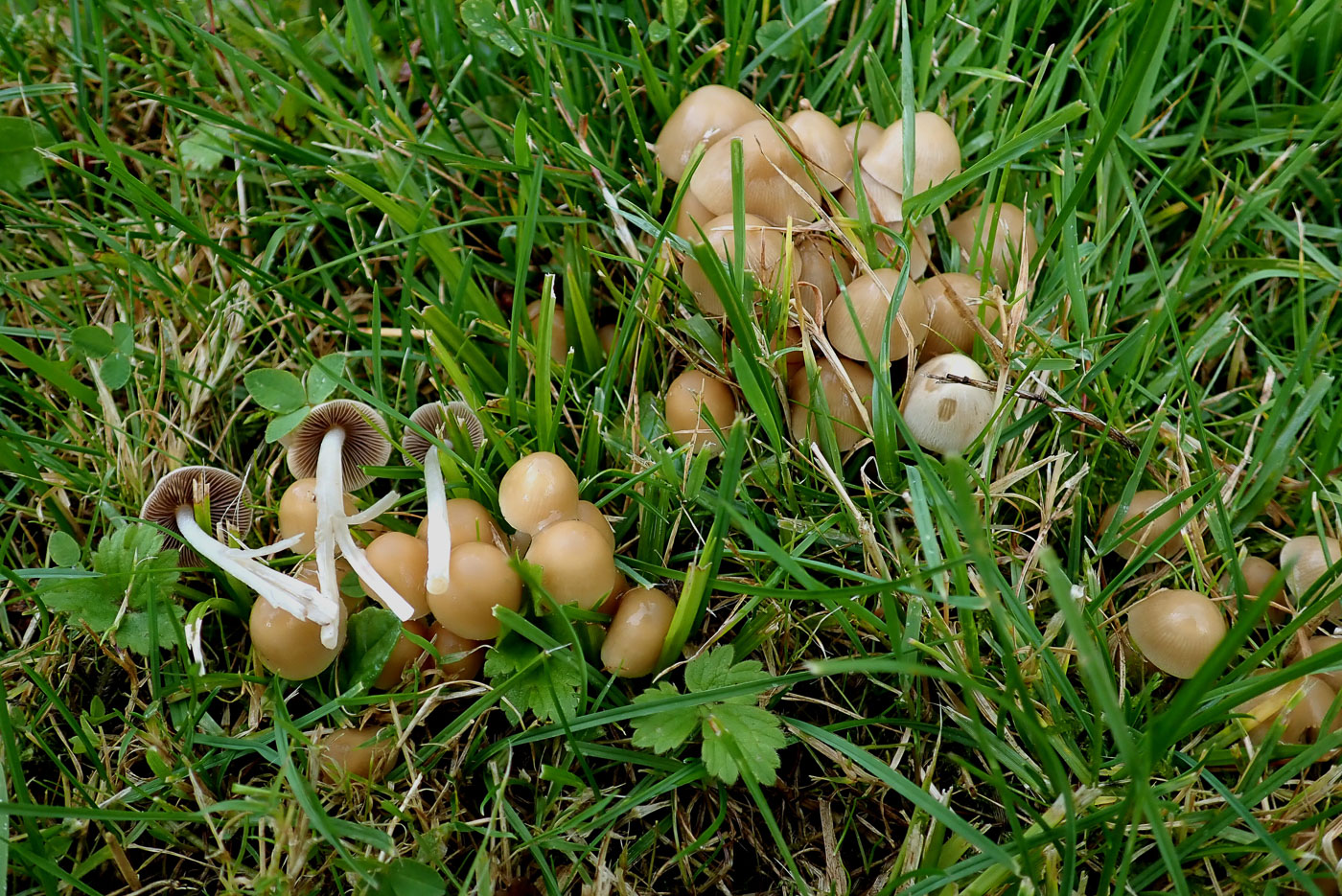 |
October 6th Psathyrella multipedata (Clustered Brittlestem)
Several tightly packed clusters of this species were found in soil in longish grass at Wotton Park Estate by Penny Cullington. Psathyrella is a large and difficult genus and very few species are nameable without using a scope, but this is one of them. Its preference for longish grass and habit of growing in dense domed clusters are the salient features of this species once you've picked one to check the typically brittle white stem and gills which start pale but end up almost black when mature - features of the genus.
|
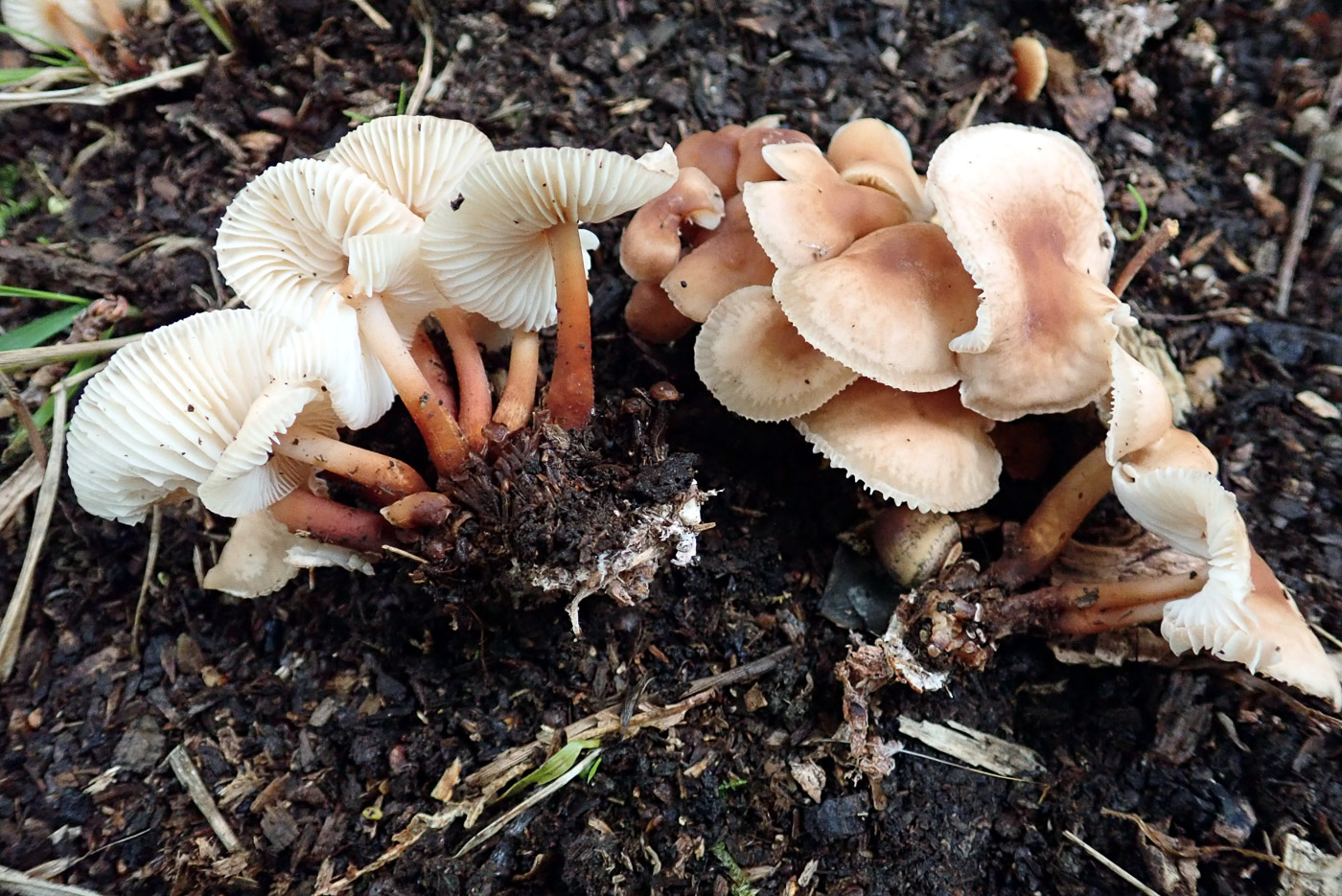 |
October 6th Gymnopus erythropus (Redleg Toughshank)
This collection was growing in litter under Oak at Wotton Park Estate, found by Penny Cullington. A typical rather flexible rubbery Gymnopus species, the caps are pale, almost white, with a chestnut brown centre, the gills are cream to white, but the feature to note in the field is the stem. Shiny smooth, hollow and often grooved, the reddish colour towards the base contrast strongly with the rest of the fruit body. It also has a sweet smell.
|
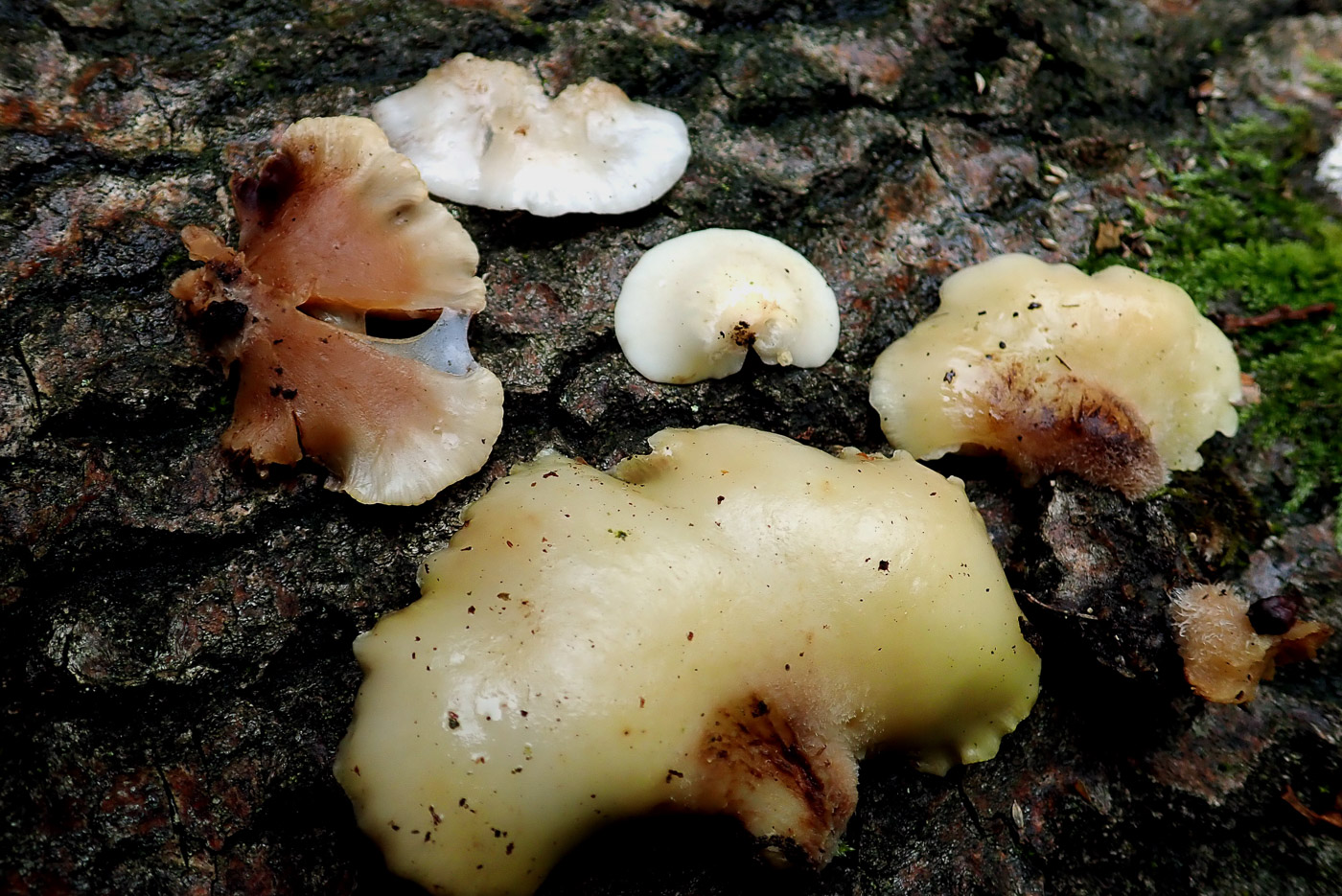
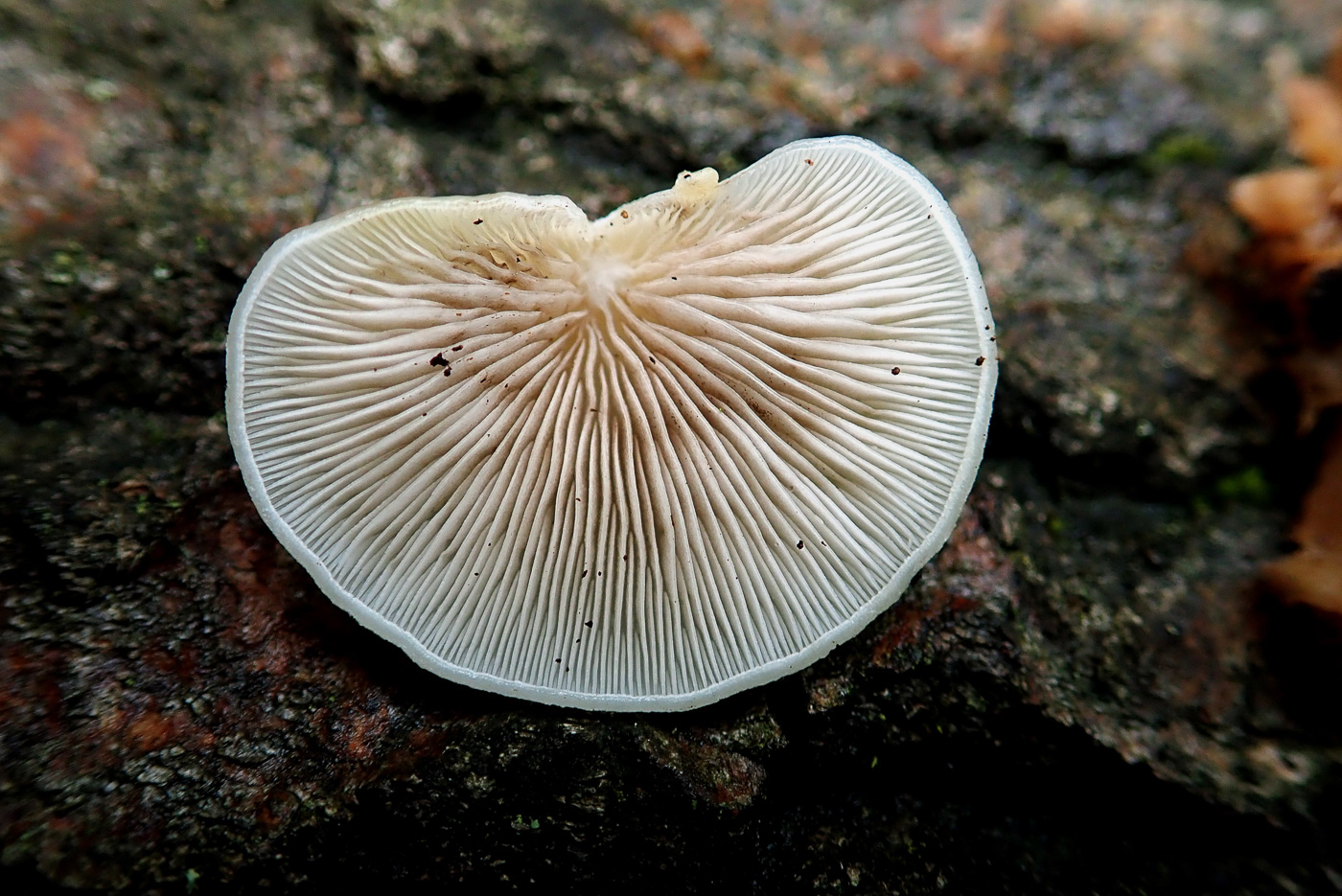
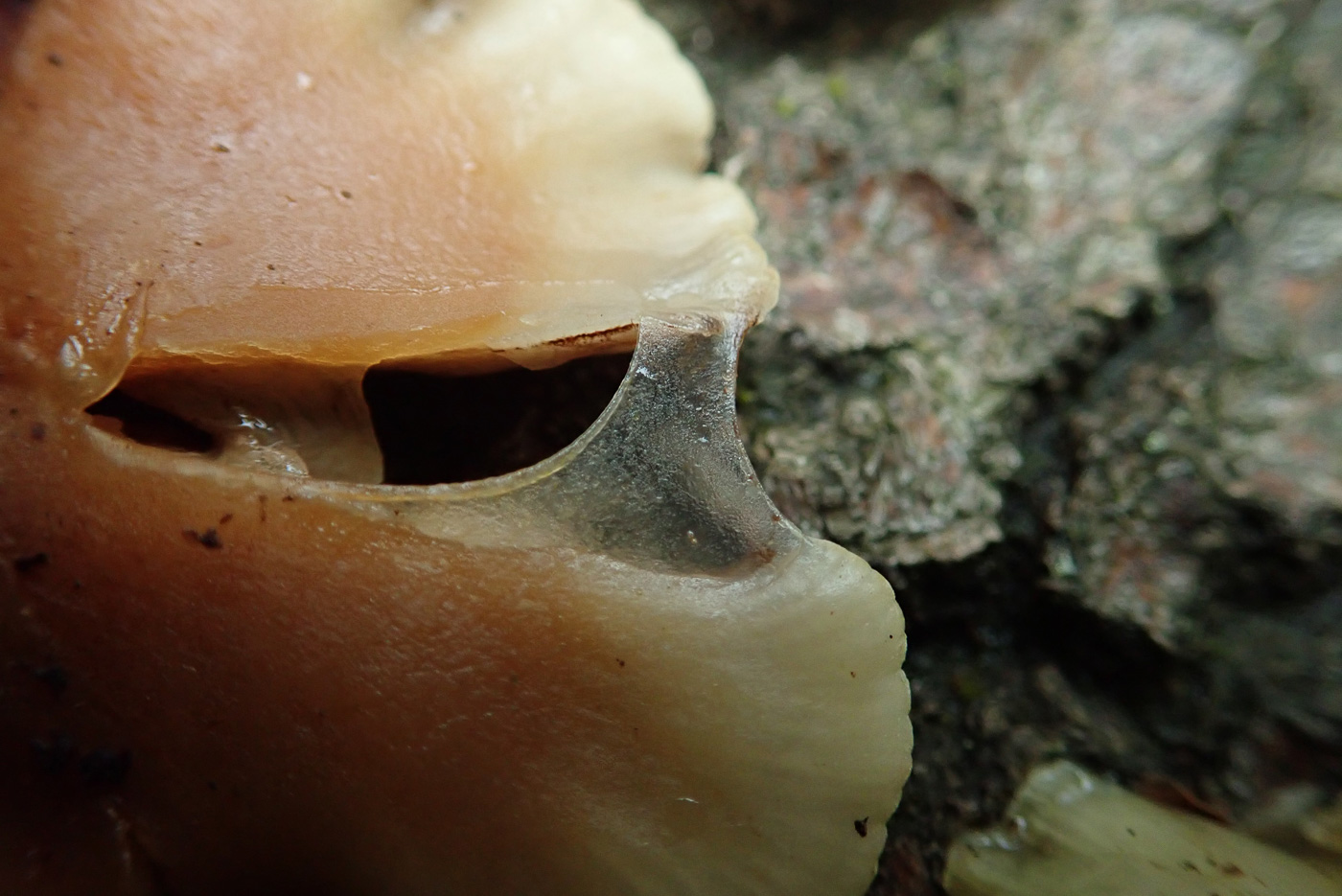 |
October 6th Crepidotus mollis (Peeling Oysterling)
Our first Crepidotus of the season, this is almost the only member of the genus nameable in the field and was found by Penny Cullington on the same trunk pile as Trametes hirsuta at Wotton Park Estate. It is the largest in the genus, with caps up to 8 cm across though often considerably smaller than this, and grows on deciduous fallen wood. Note the typical lack of stem and shell shape of the genus showing well in the upturned specimen (photo 2), and the key feature of this species showing in photo 3: the gelatinous elastic cuticle (cap covering) which one can easily stretch. In all other species in the genus the cap, if treated this way, will just break in half.
|
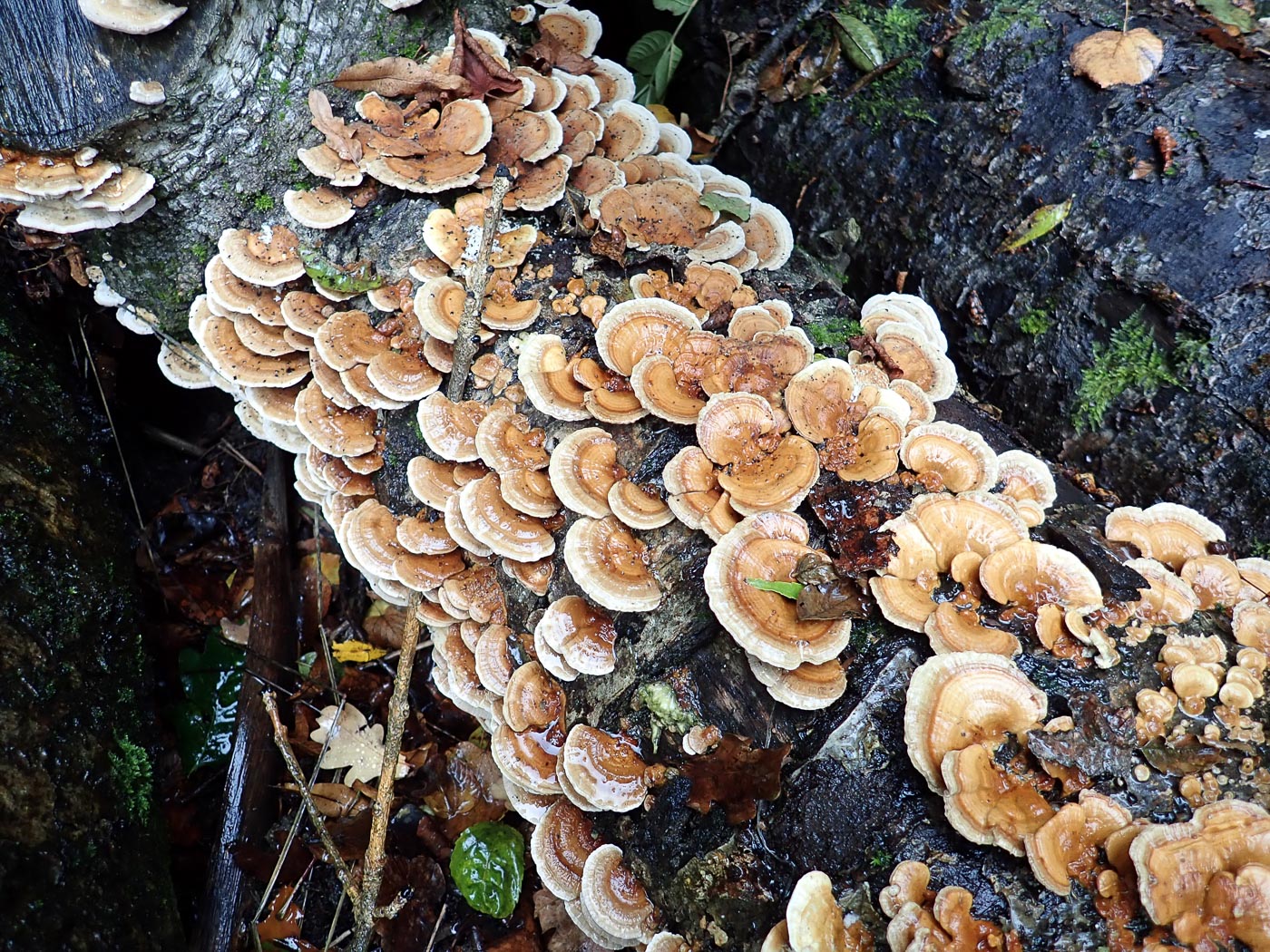
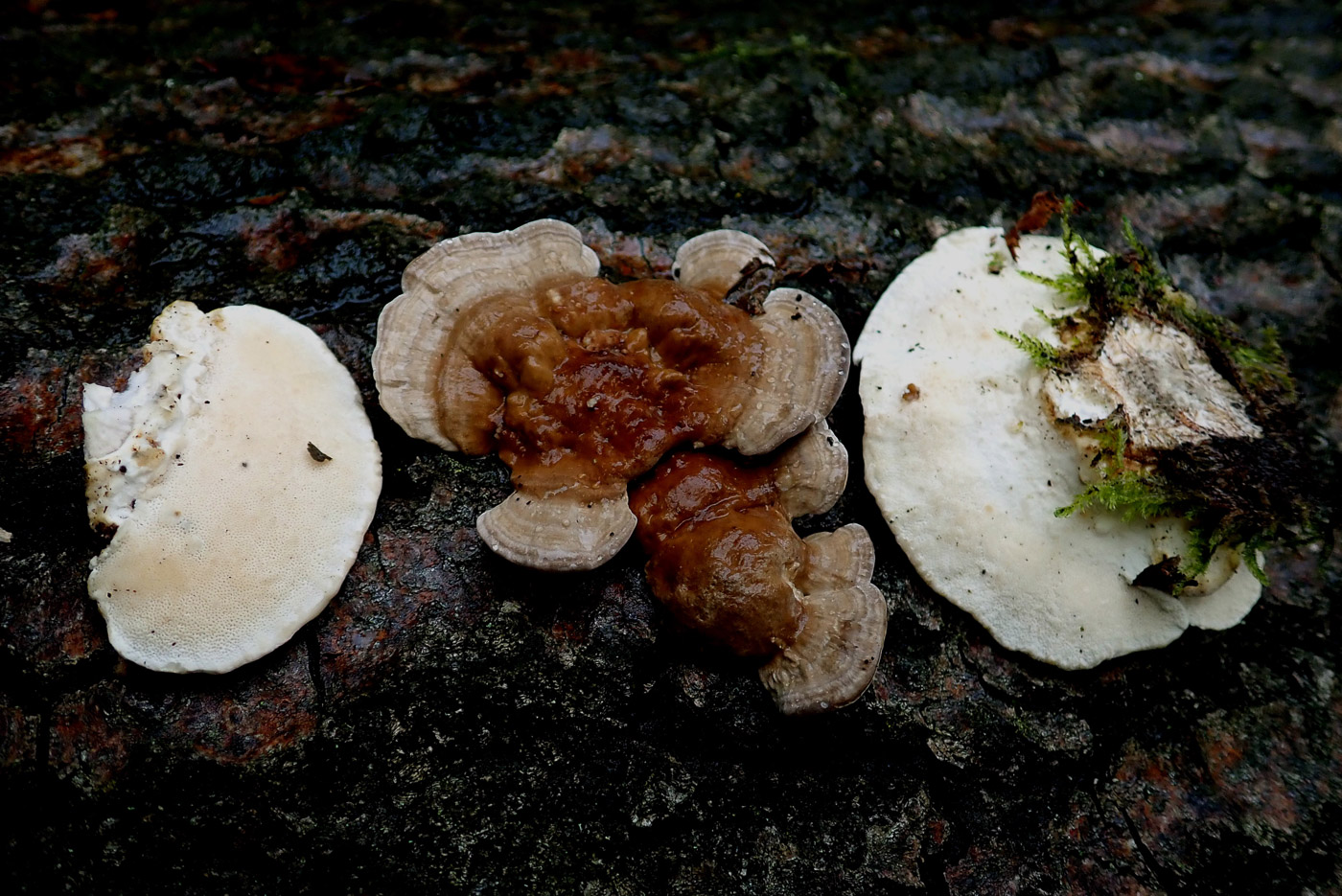 |
October 6th Trametes hirsuta (Hairy Bracket)
Joanna Dodsworth found this impressive spread of brackets on a pile of felled deciduous trunks in Wotton Park Estate (photos Penny Cullington). Much less common that the two better known Trametes species (see photos dated Sept 15 & 26), this species falls between the two both in size and in thickness and firmness. The zoned cap and white pores underneath are similar to the common Turkeytail, but the bumpy surface and general firmness make it more like a smaller version of Lumpy Bracket. Each bracket can be up to 10 cm across.
|
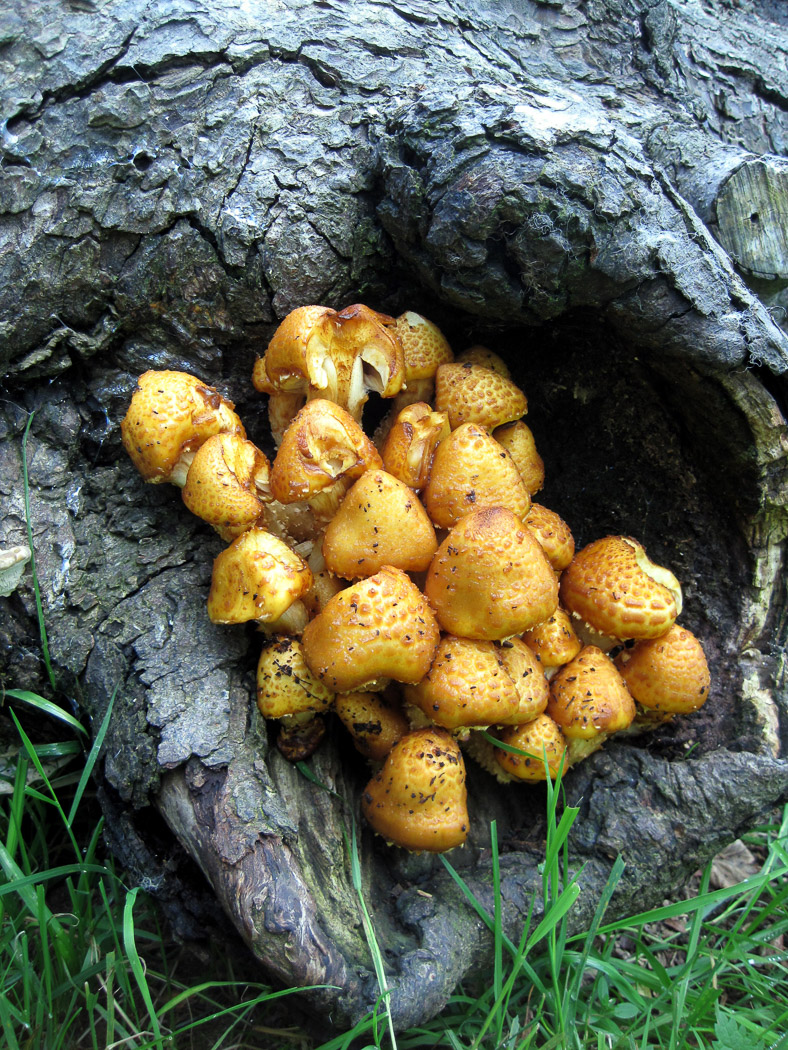
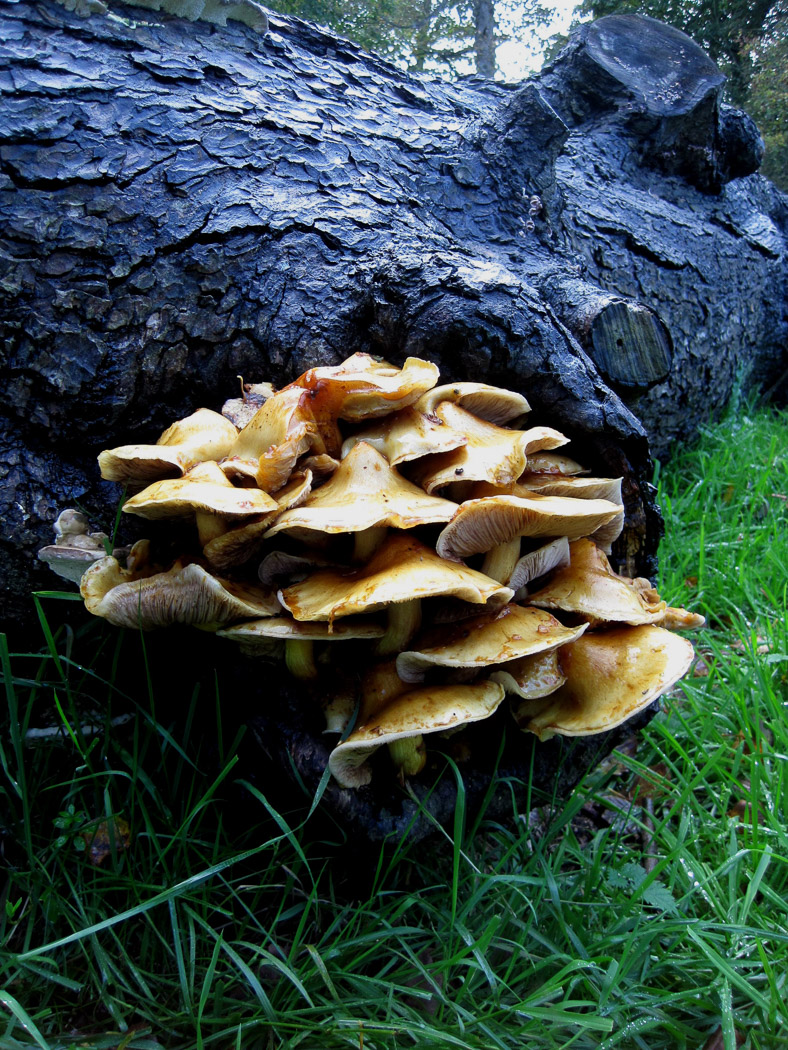 |
October 6th Pholiota adiposa ((Golden Scalycap)
Though we already have an example of this (see photo dated Oct 01) Joanna Dodsworth has been watching a good sized clump of the same species growing on Horse Chestnut at Brill Walks and the development over the space of five days is interesting. Photo 1 shows the collection six days ago with photo 2 taken today with caps now fully expanded. However, the heavy rain which fell in the interim has removed much of the scaliness leaving the caps almost smooth. See notes dated Oct 01 for more information.
|
October 5th 2020
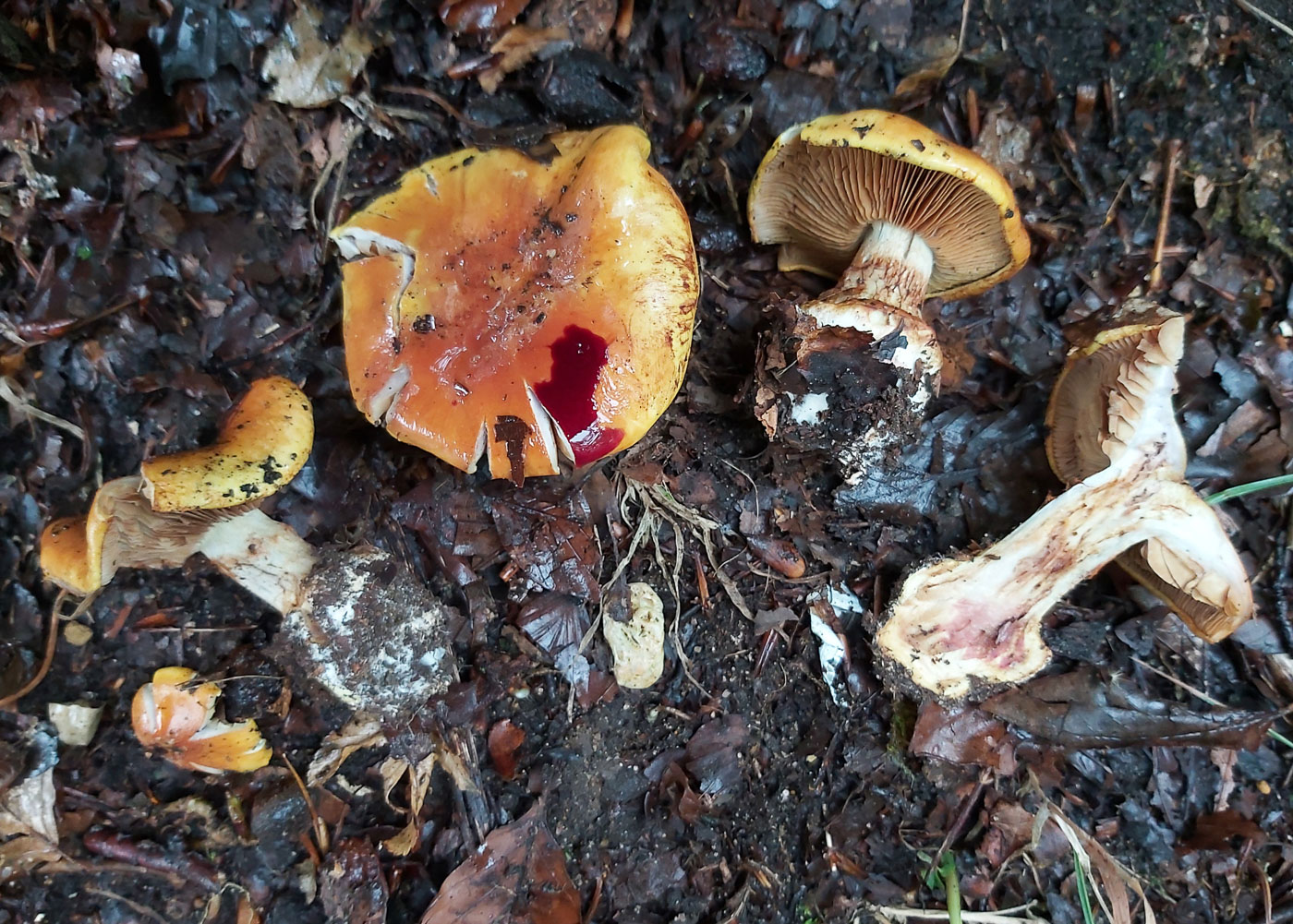 |
October 5th Cortinarius bergeronii (a Webcap with no common name)
Jesper Launder found this impressive species in Jordans Village under Beech, identified by Geoffrey Kibby. It is a member of the sticky capped Phlegmacium group and extremely similar to C. elegantissimus which also goes blood red if you add a drop of the chemical KOH on the cap, as seen here on the larger cap. To split the two species you need to check the spore size - considerably smaller in today's species. It is seldom recorded but little known and much more recently described than C. elegantissimus.
|
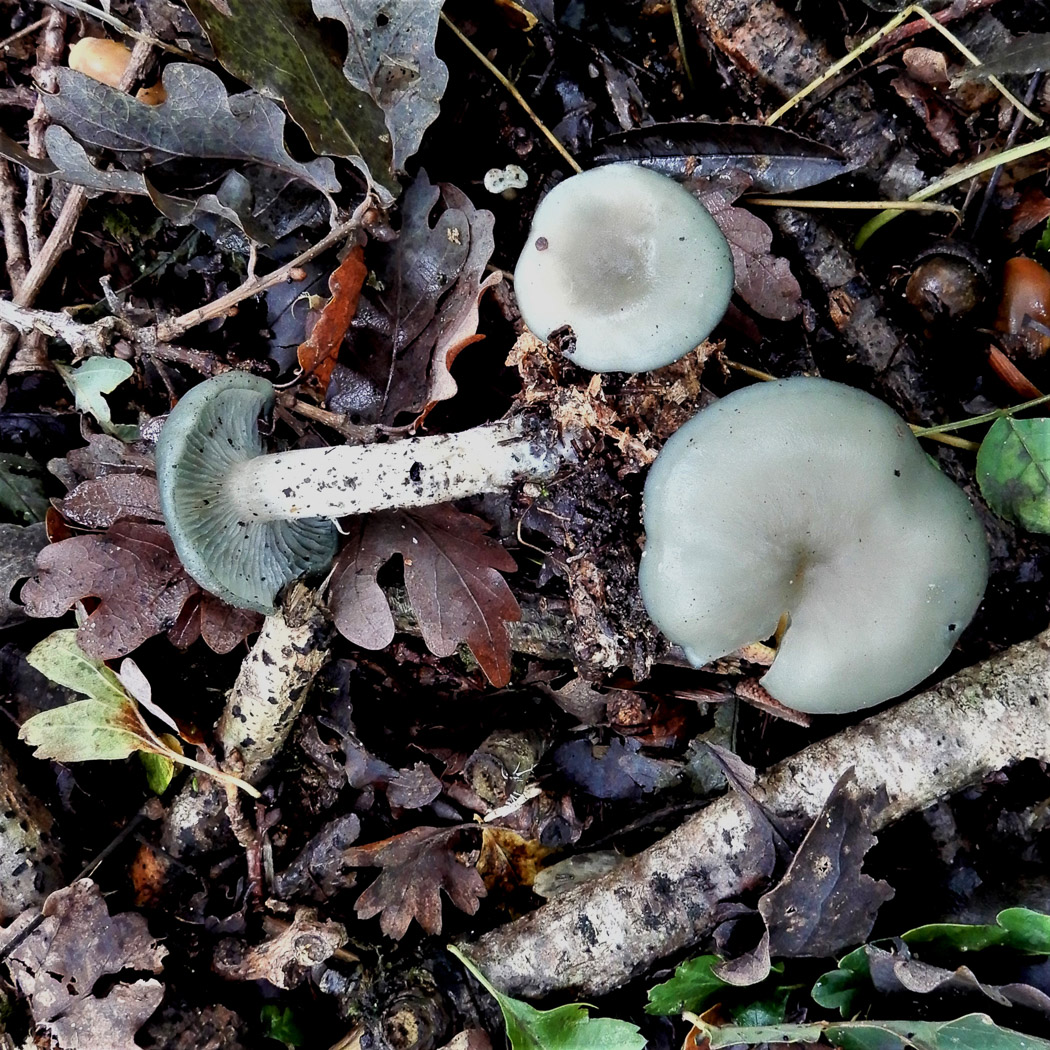
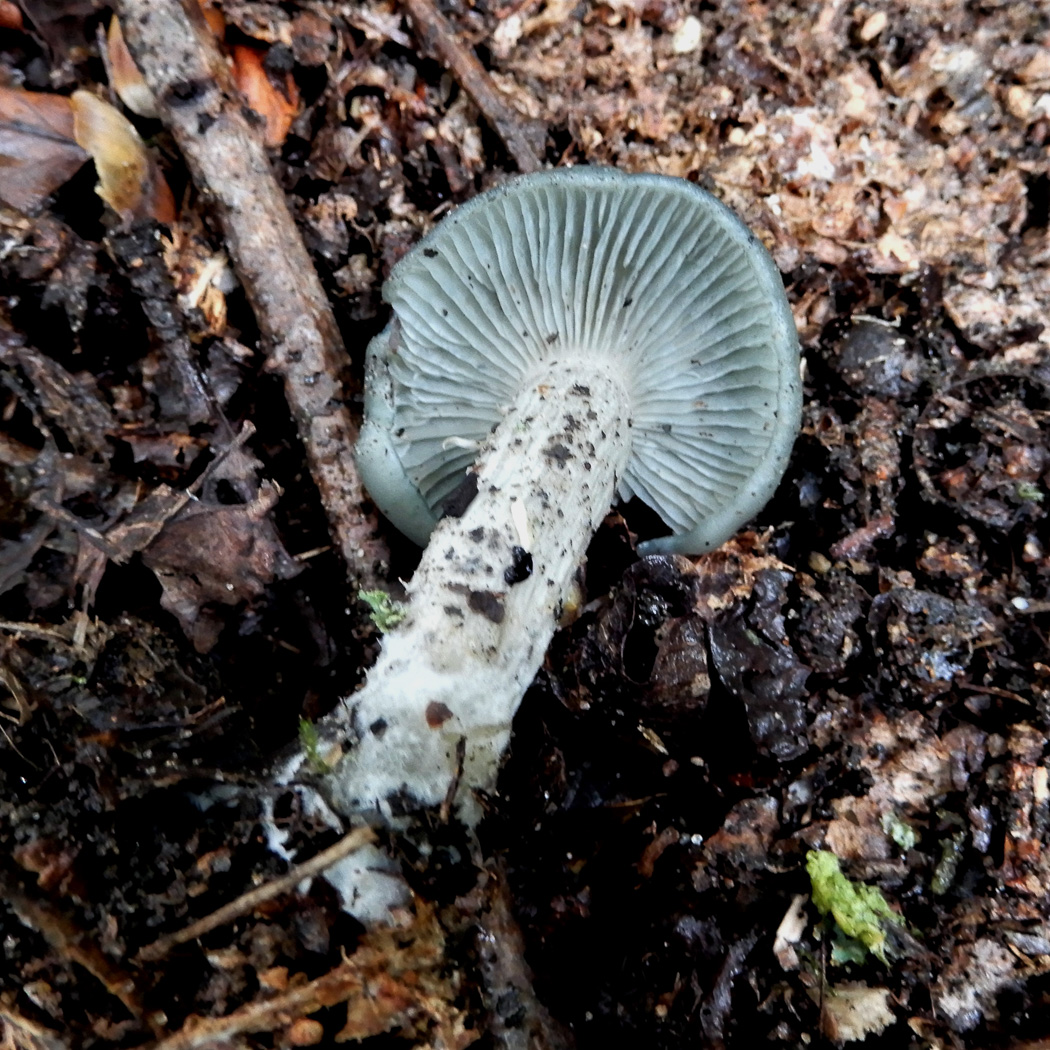 |
October 5th Clitocybe odora (Aniseed Funnel)
This beautiful species was found by Margaret Bolton in Moorend Common in deciduous litter. This genus has been poorly represented so far this season and many Funnels are not at all easy to identify. This one, however, is probably the easiest with two key field characters: the strong smell of aniseed is unmistakeable and the blue green caps can sometimes be even darker than in this collection - a unique colour within the genus. However, be aware that the caps of Stropharia caerulea (see photo dated Sept 30) when young and fresh can also be this colour. Note, therefore, the differing gill colour which will separate the two species straight away.
|
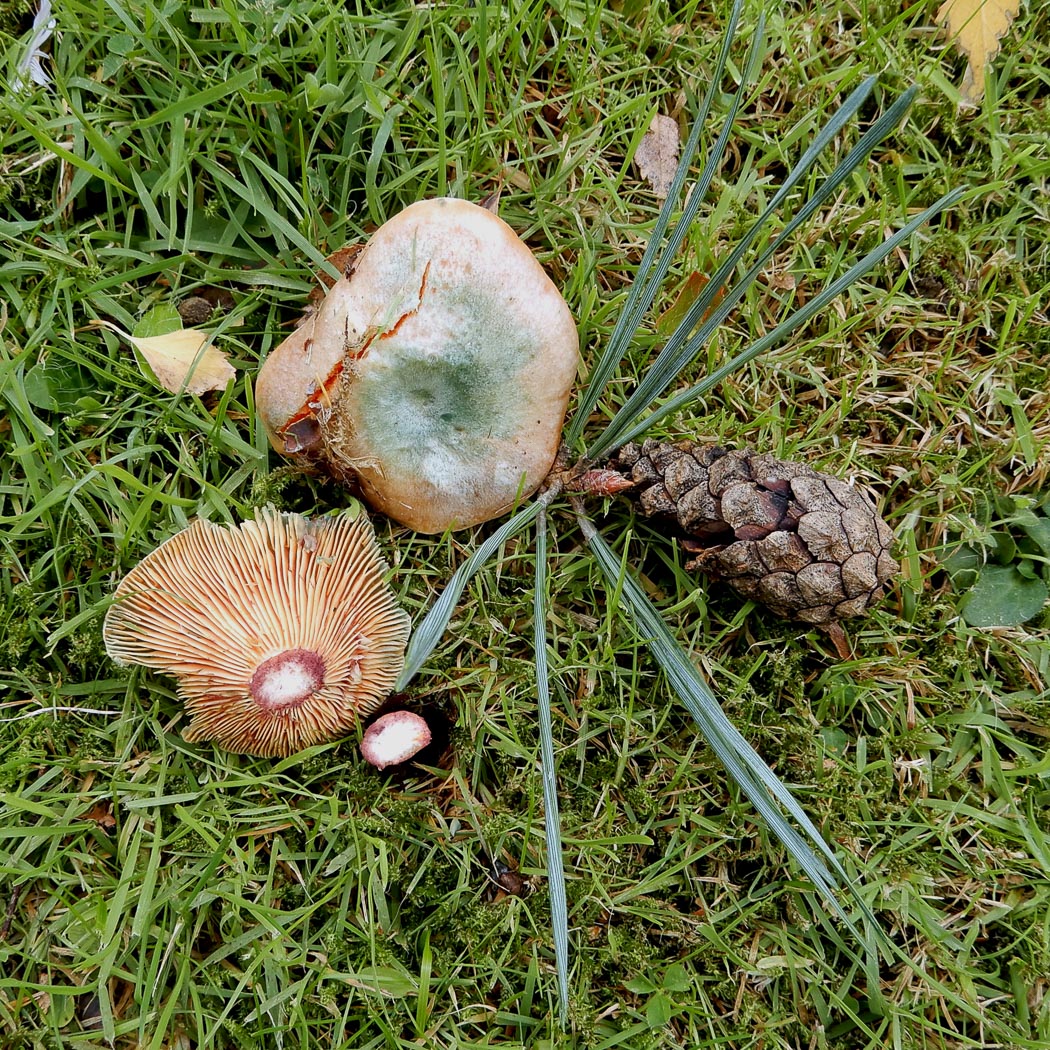 |
October 5th Lactarius semisanguifluus (a Milkcap similar to Saffron Milkcap)
Margaret Bolton found this interesting Milkcap under Pine near Moorend Common. Initially impossible to tell from the better known Saffron Milkcap (see photo dated Sept 25), especially as both species are only found under Pine, one needs to damage the underside (as Margaret did) and wait for a few minutes watching for any colour change in the orange juice and flesh. Note how the upturned specimen is turning distinctly wine red where the stem was broken off, making this L. semisanguifluus. Probably not rare but not often recorded due to many finders assuming they have L. deliciosus!
|
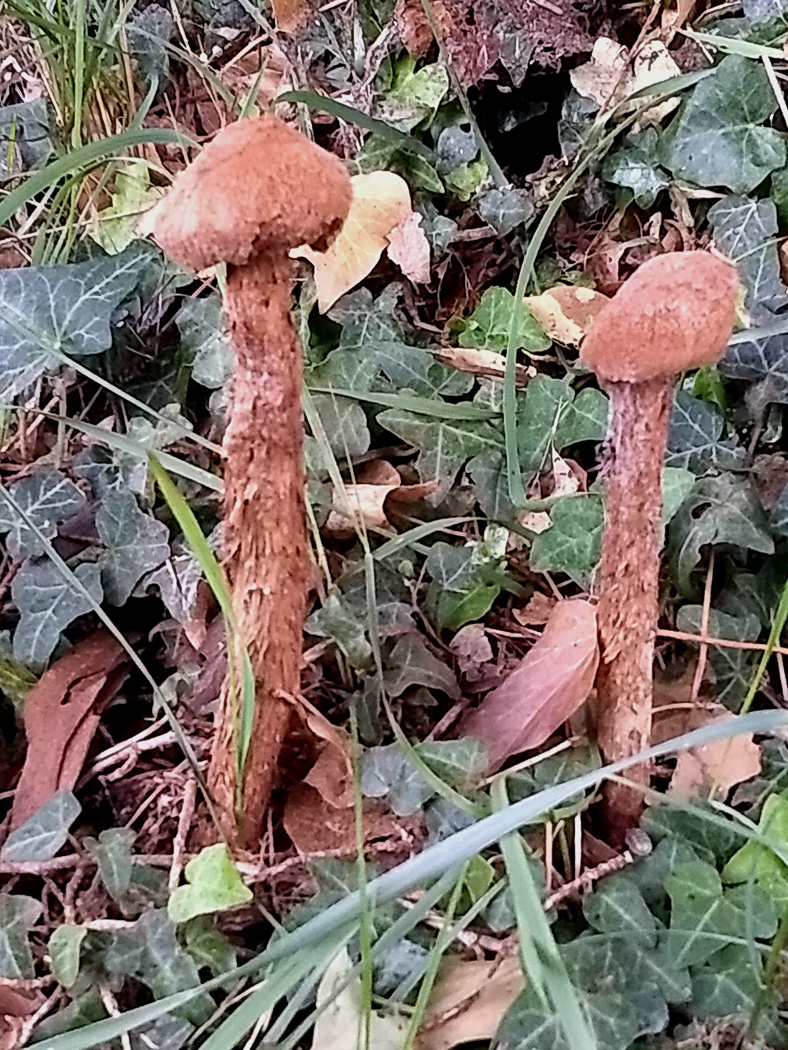
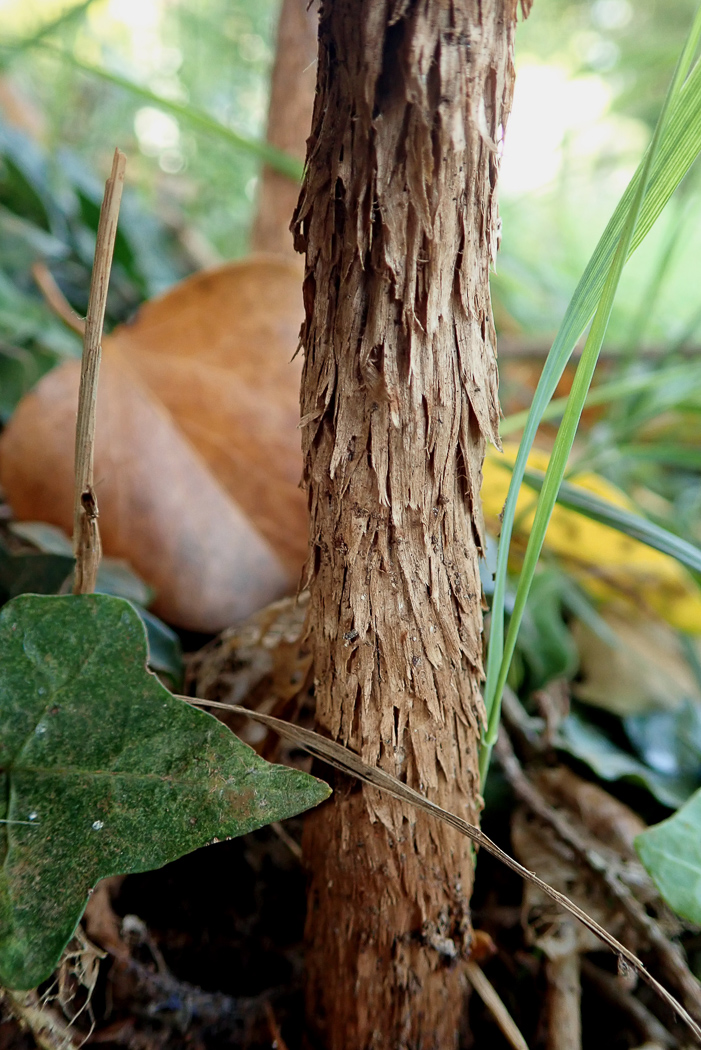
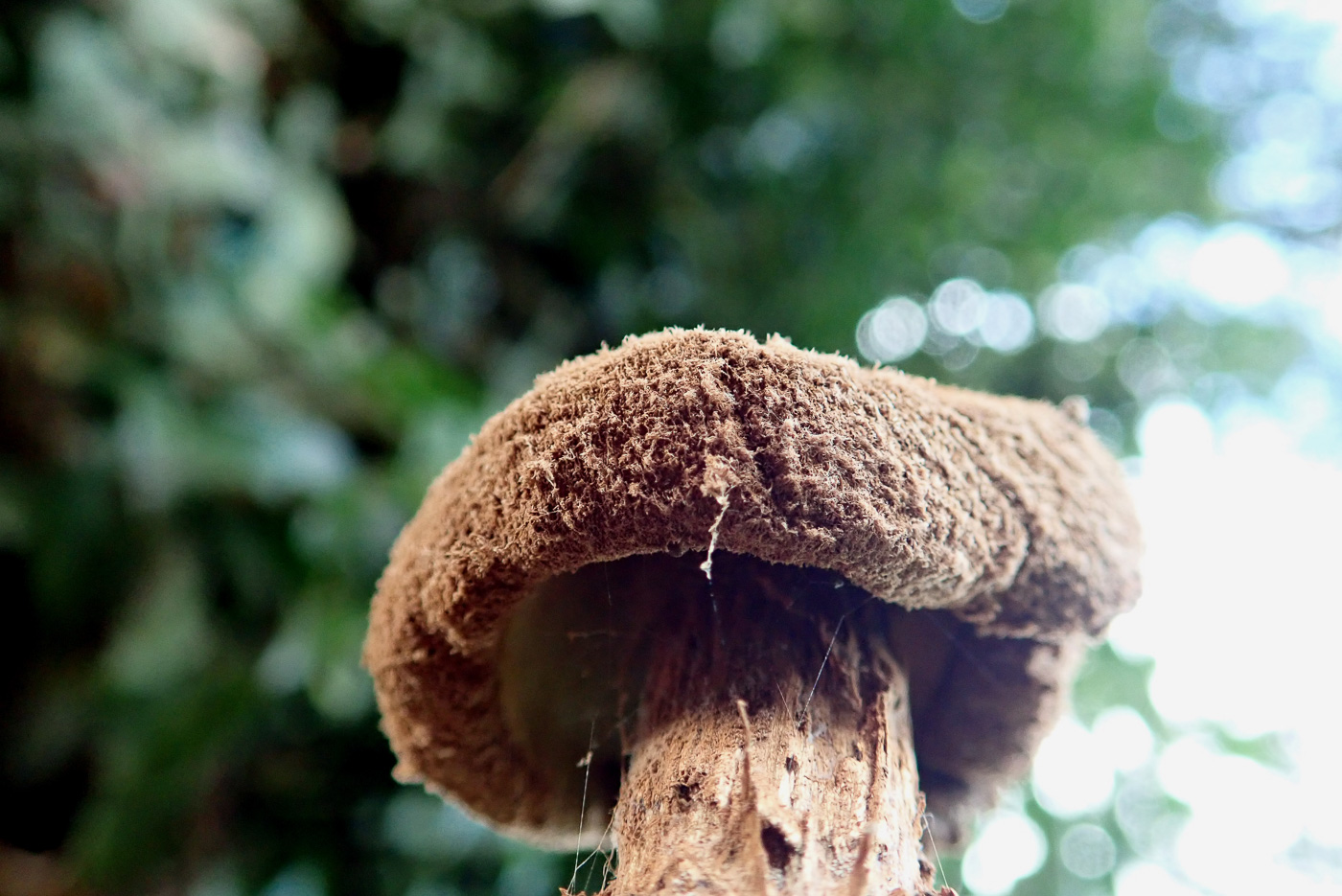 |
October 5th Battarrea phalloides (Sandy Stiltball)
Richard Fortey was extremely excited to come across this very rare and unique species at a location in the south of the county. With very few known sites - all in southern or eastern England - it is new to Bucks. The species is loosely related to puffballs and stinkhorns, arising from a volva-like sac with a shaggy hollow stem up to 20 cms tall and topped with a cinnamon brown puffball-like head which contains the spores. It occurs all over the world in dry sandy places / deserts and appears to be moving north possibly as a result of global warming?
|
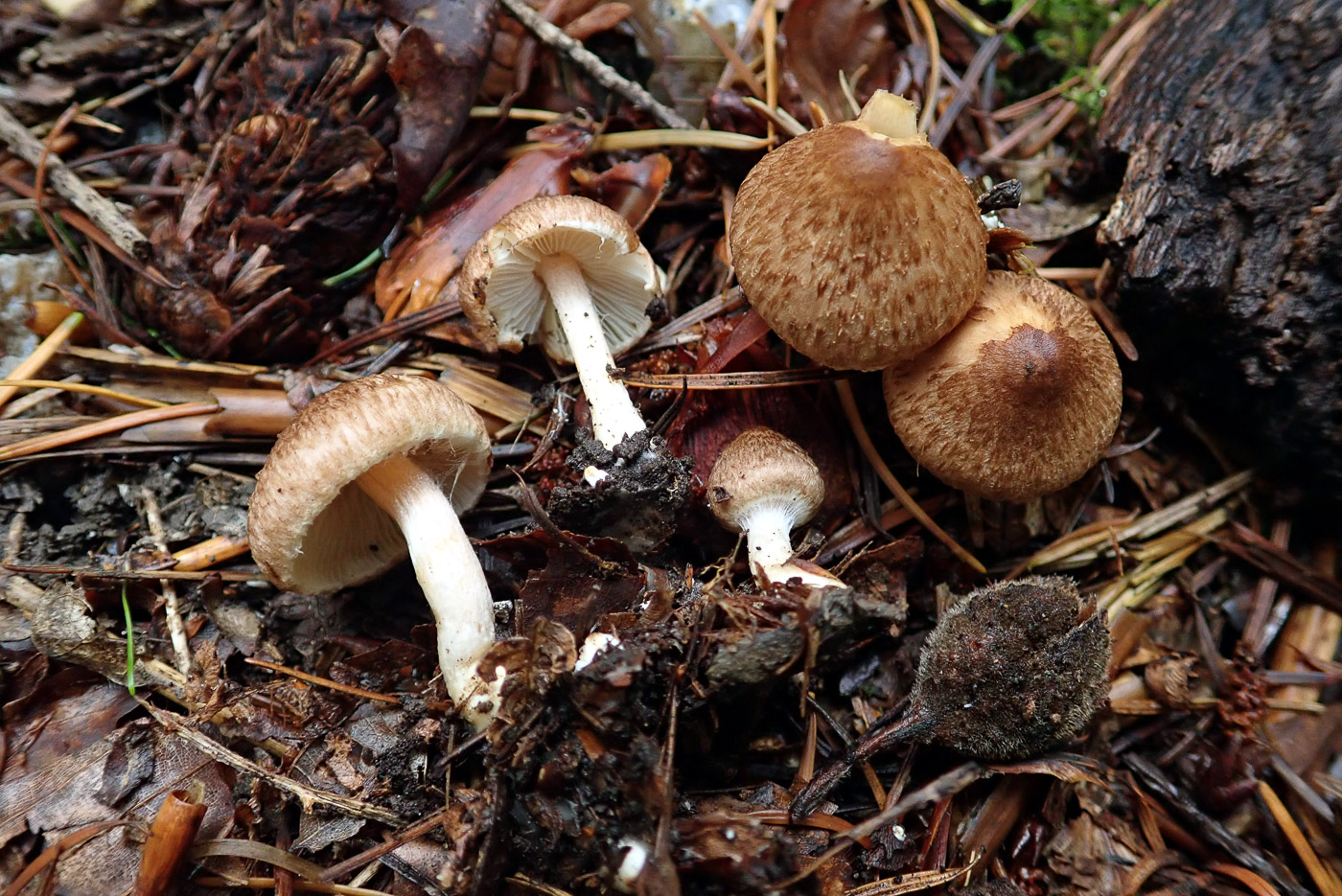 |
October 5th Inocybe flocculosa (Fleecy Fibrecap) 
Penny Cullington found this collection under Douglas Fir in Common Wood. With so many very similar brown capped Fibrecaps, often classed as LBJs (Little Brown Jobs), it is not possible to name them without using a scope, but this species being a fairly typical example of the genus it was though worth including here.
|
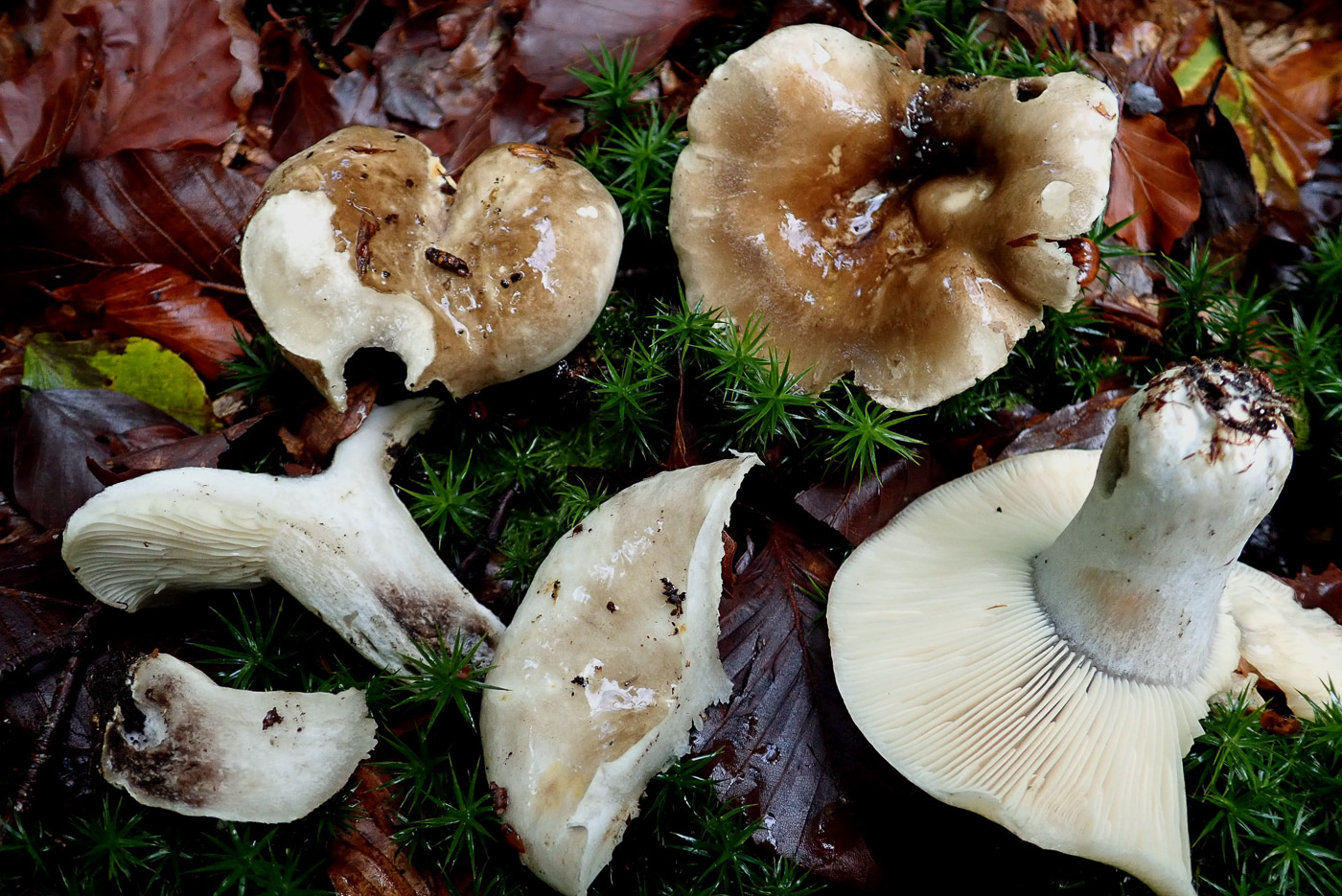
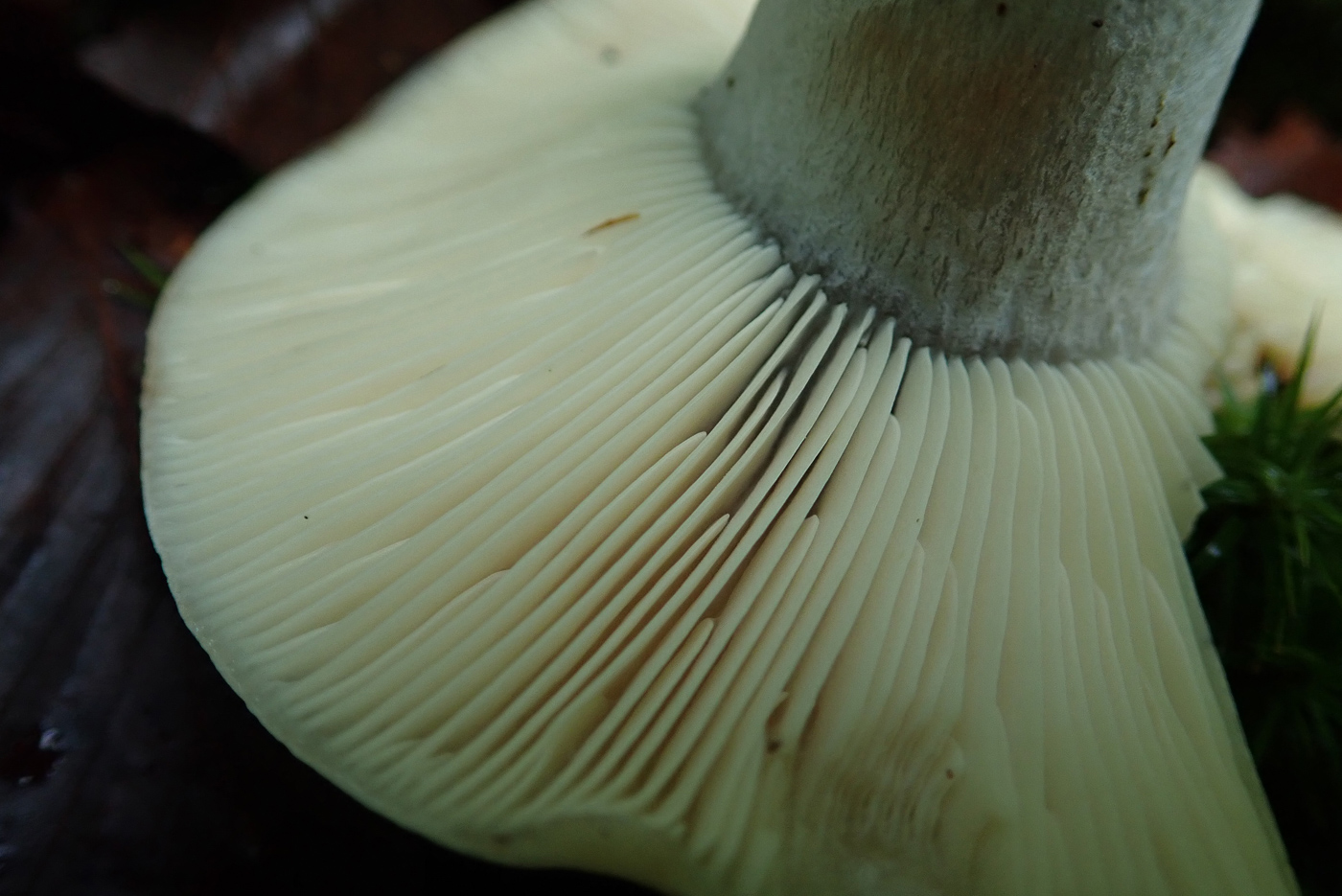
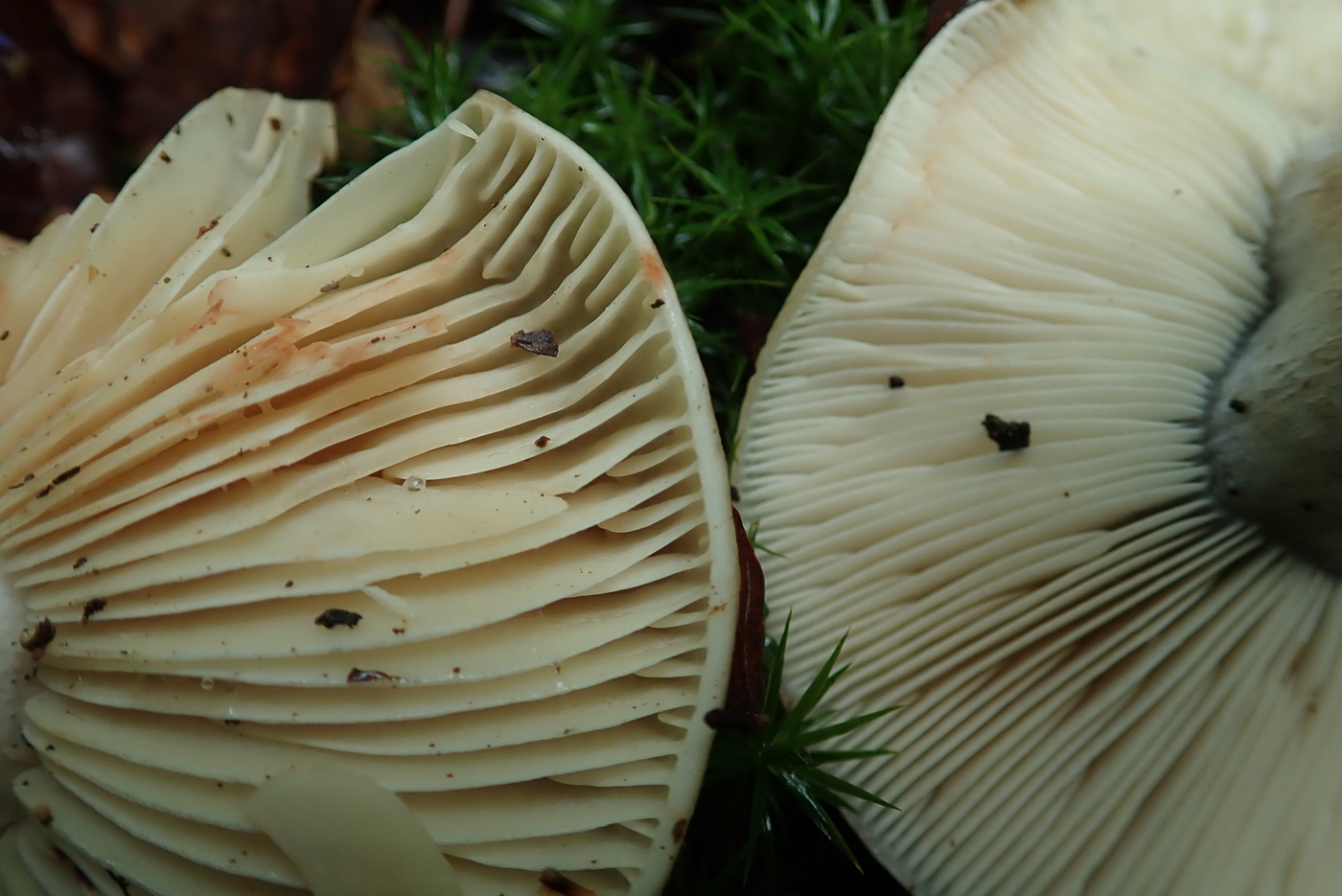 |
October 5th Russula densifolia (Crowded Brittlegill) 
Penny Cullington found good quantities of this fairly common Brittlegill under Beech in Common Wood. There were many large fruit bodies of R. nigricans (see photo dated Sept 18) - virtually identical to our species when viewed from above - in evidence here that it was all too easy to assume that they were all the same. Not so! Turn one over and the contrast between the gills of R. nigricans and R. densifolia is immediately obvious (see photo 3 with R. nigricans on the left and R. densifolia on the right). There are in fact other quite common look-alike species with the same crowded gills as today's; The only safe way to determine which you have is with a scope.
|
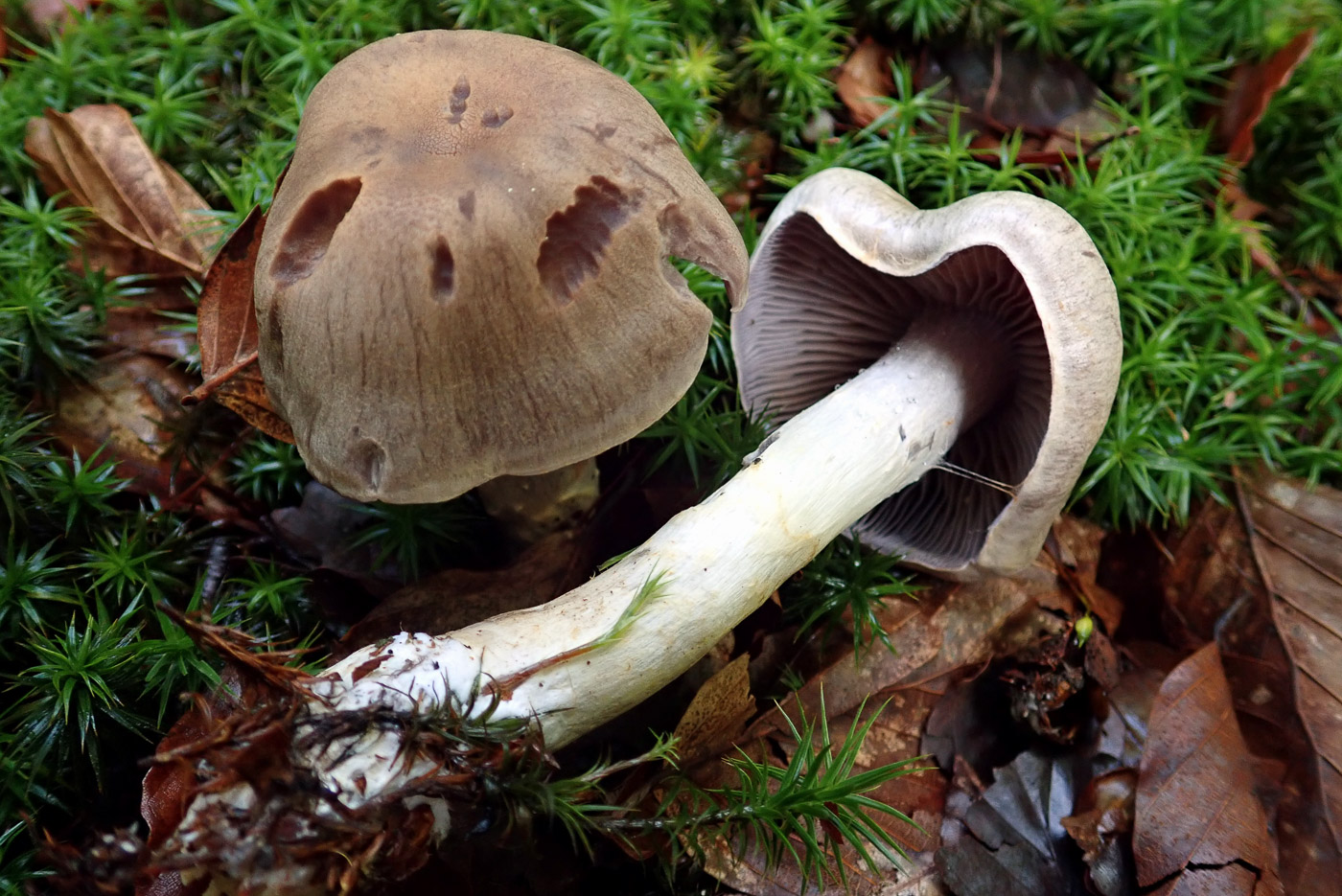 |
October 5th Cortinarius anomalus (Variable Webcap)
Penny Cullington found this fairly common Webcap under Beech in Common Wood. A species which belongs to the large and difficult Telamonia group, it is recognisable by its palish grey brown slightly streaky cap with violacous hints when young, rather crowded gills which are bluish lilac when young, and a stem which is whitish with violaceous tones at the top and yellowish below. Cutting it open the cap flesh and top of stem is clearly violet and it has a rather nauseous smell.
|
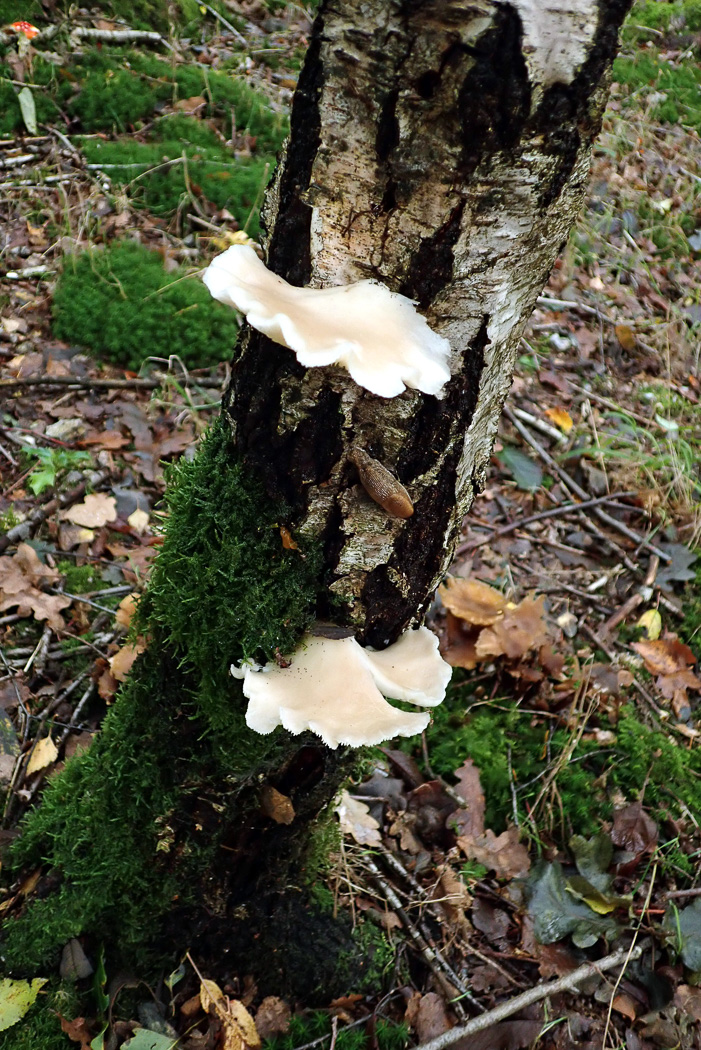
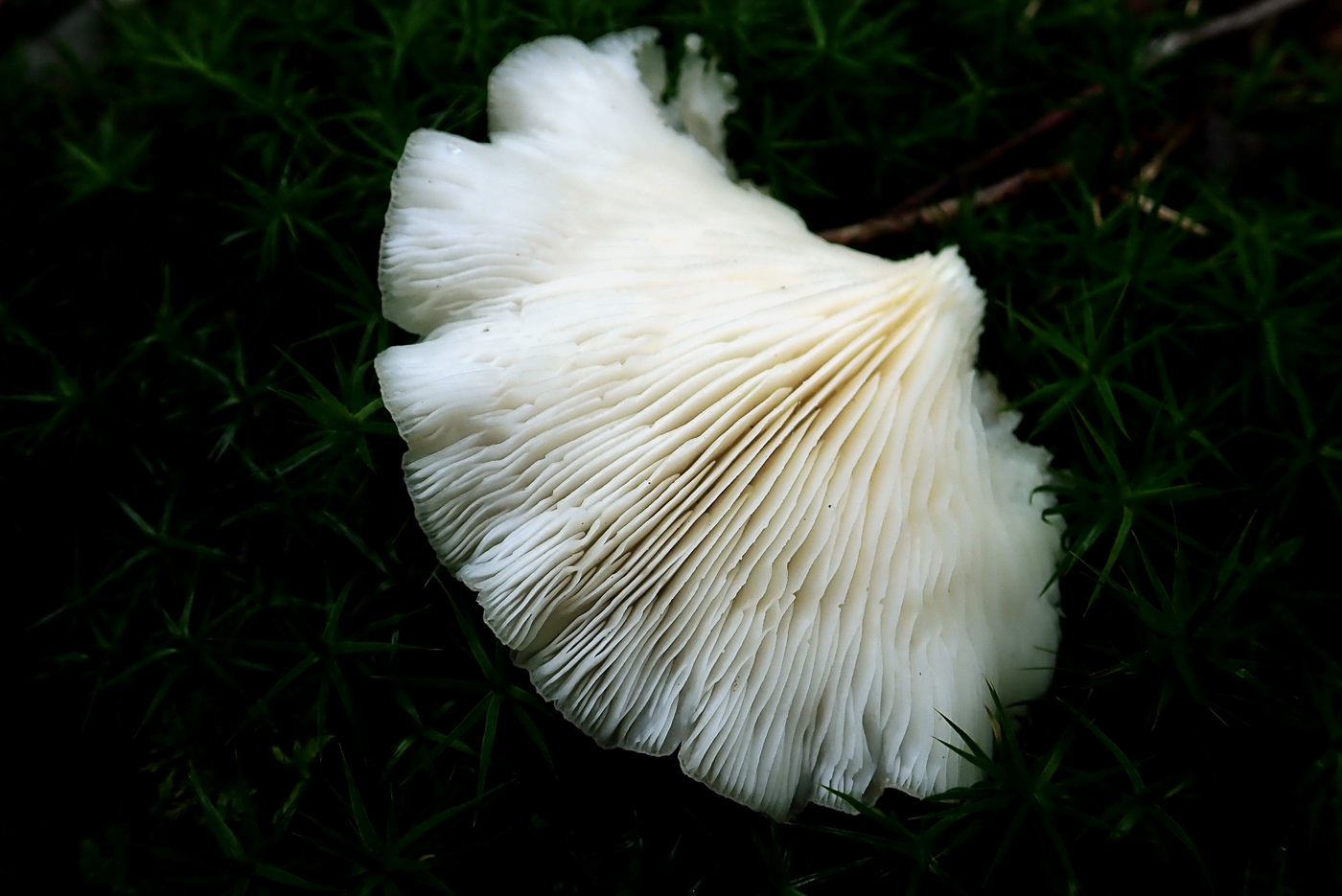 |
October 5th Pleurotus pulmonarius (Pale Oyster)
Penny Cullington noticed this unusual species on a standing Birch trunk in Common Wood. Superficially very similar to the much more common Oyster Mushroom (see photo dated Sept 21), it tends to grow separately and not in clusters, the cap is never darker than pale cream and the stem is very short or virtually absent - all features in variance with Oyster Mushroom. Furthermore it has a delicate sweet smell similar to that of Clitocybe fragrans and in this area seems to occur most frequently on Birch, as today.
|
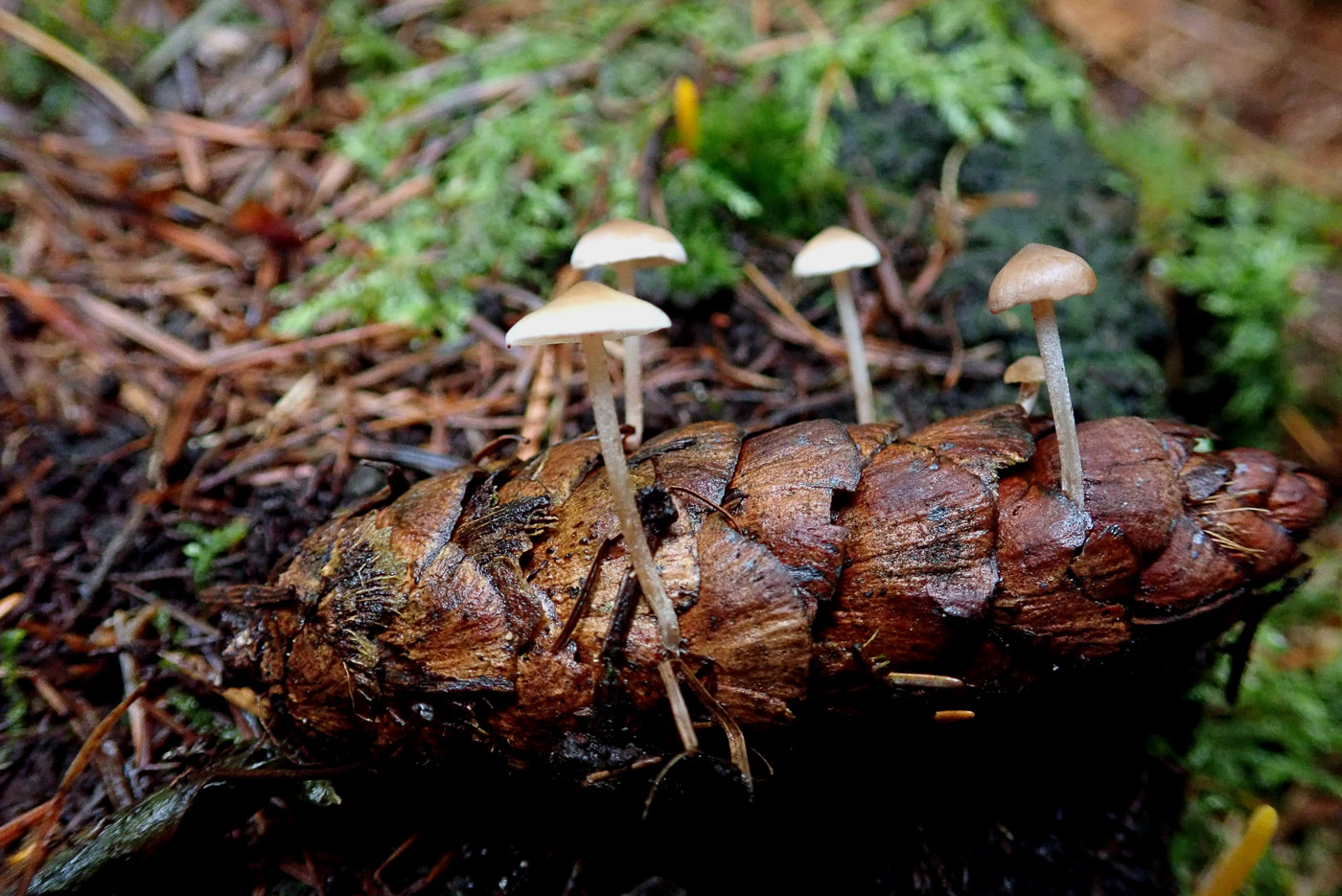
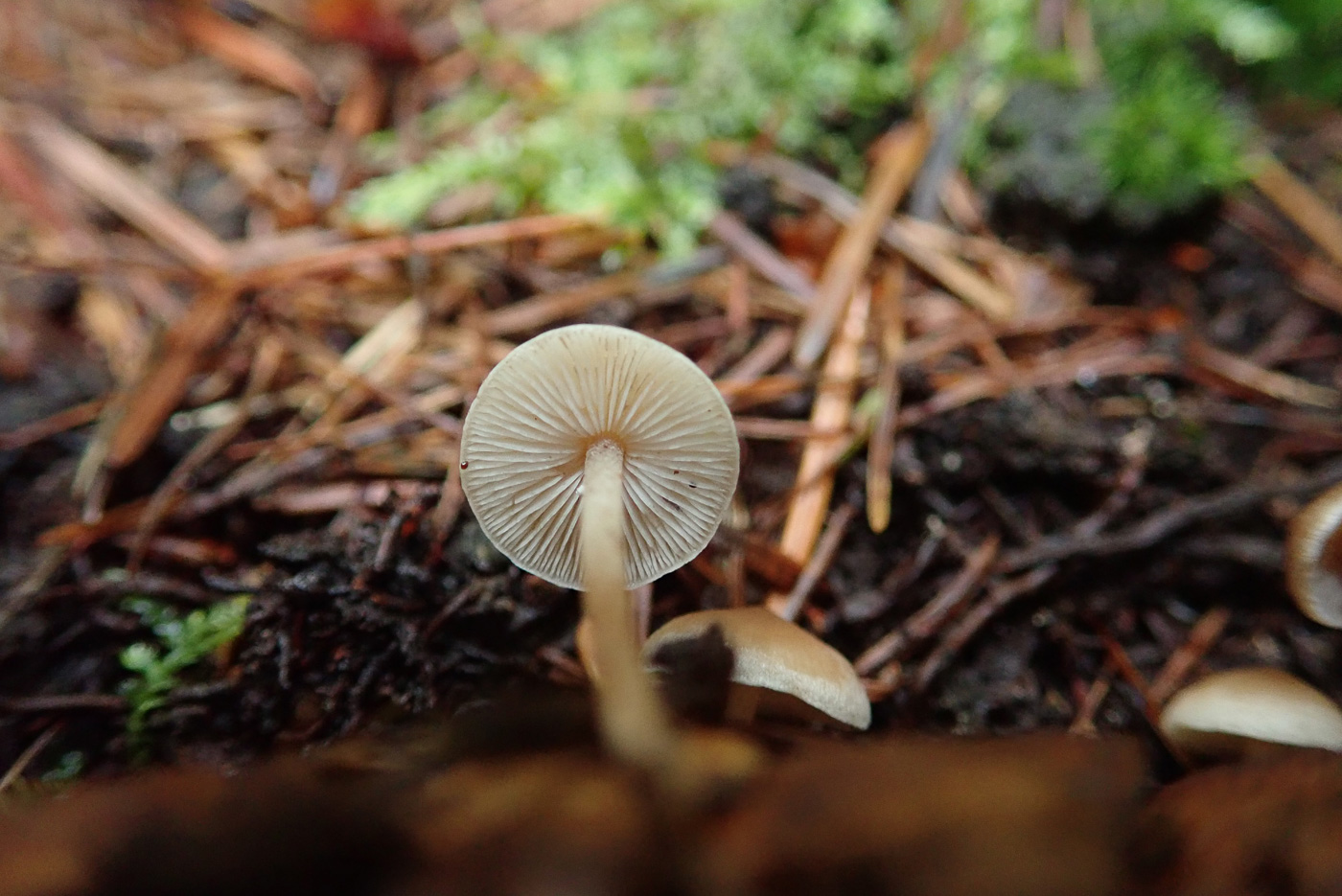 |
October 5th Baeospora myosura (Conifercone Cap)
Not far from the Mycena sanguinolenta also under the Douglas Fir today, Penny Cullington found this species in Common Wood. It grows on fallen rotting cones of various conifers, as do several other similar species, but this one can usually be recognised by its very crowded gills (see photo 2). The caps today were small, less than 1 cm across, but can be found twice this size.
|
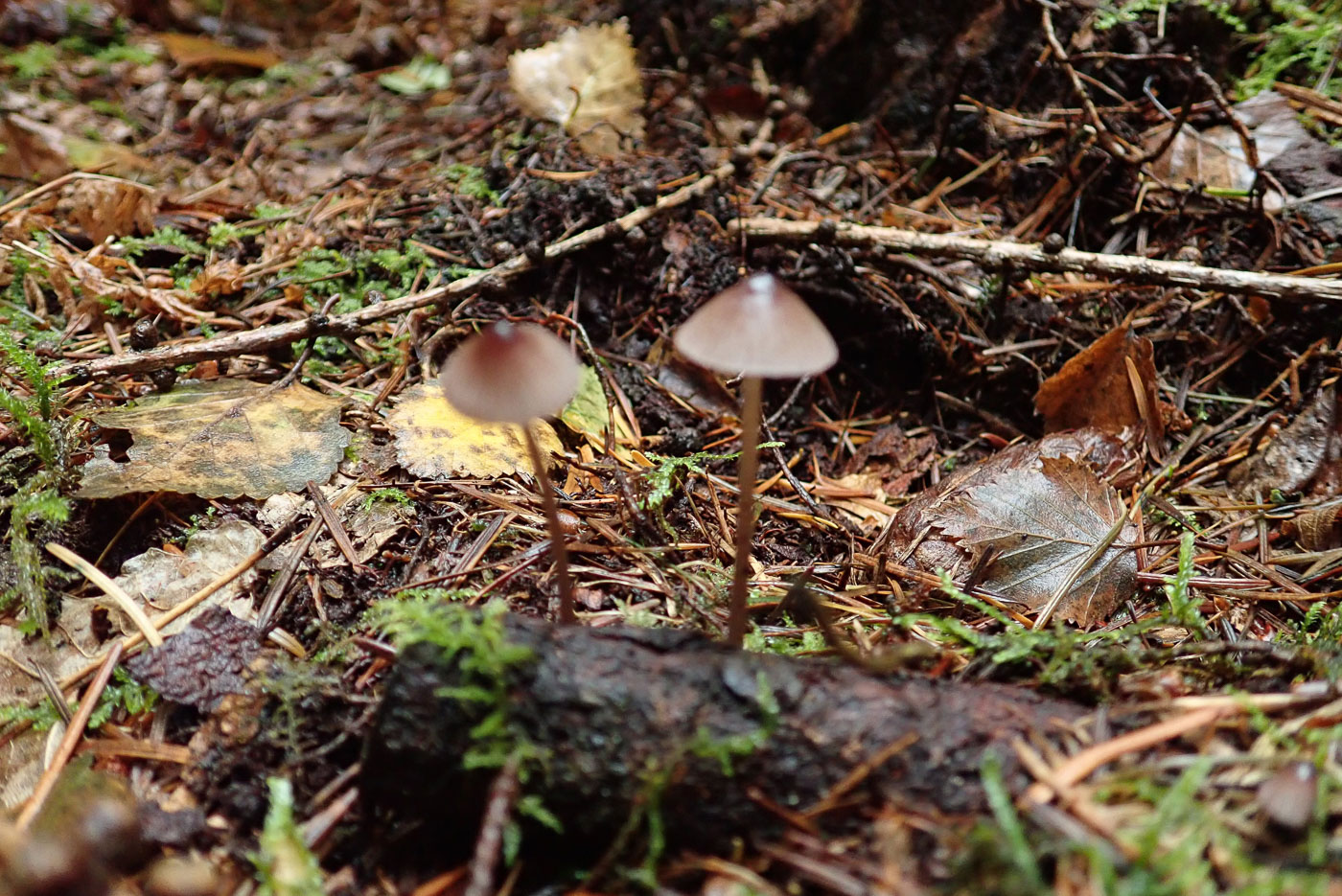
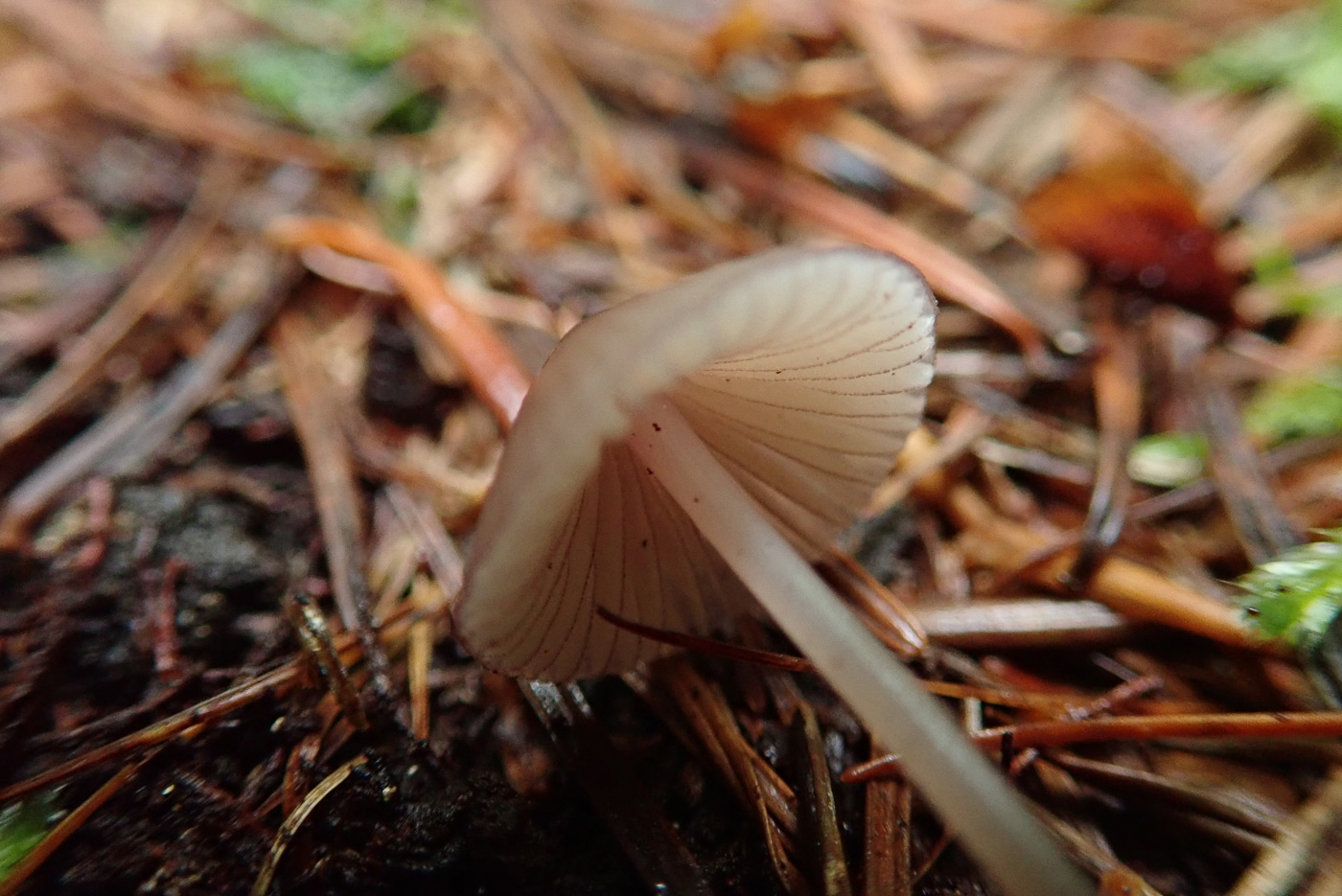 |
October 5th Mycena sanguinolenta (Bleeding Bonnet)
Penny Cullington found just two fruit bodies of this unusual Bonnet in woody conifer litter in Common Wood. This is a delicate species with caps barely more than 1 cm across at most and a fragile stem which when broken exudes a watery reddish juice. It has a preference for Spruce litter, as here under Douglas Fir which is in fact a Spruce!), and the gills have a fine brown red edge (just visible in photo 2) which is a useful diagnostic feature if the juice is not forthcoming or noticed.
|
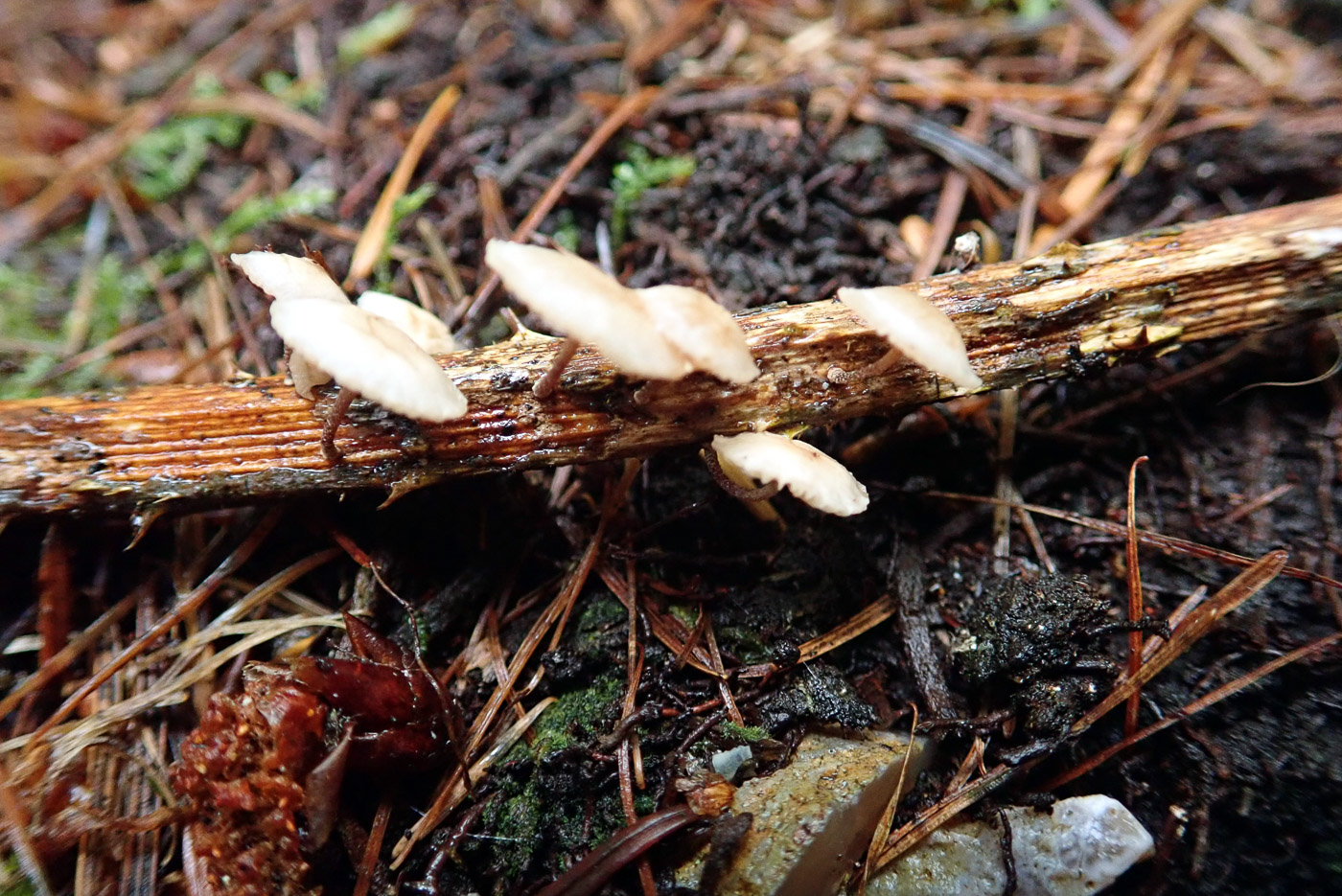
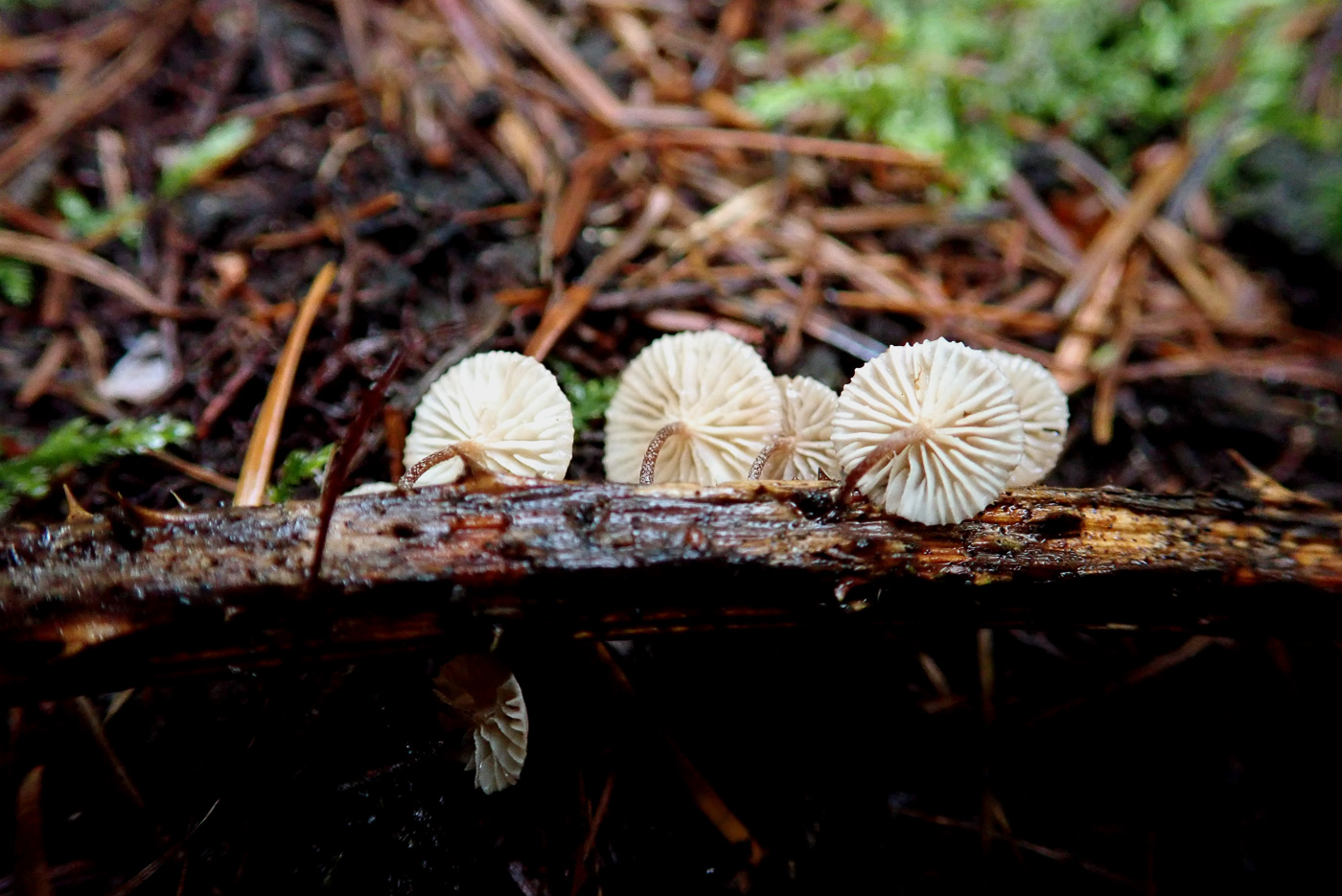 |
October 5th Marasmiellus ramealis (Twig Parachute)
If you notice a cluster of tiered tiny pale cream mushrooms on a dead bramble stem, you've probably found this species, collected today by Penny Cullington in Common Wood. Though it also occurs on fallen deciduous twigs, logs etc, it seems to favour dead bramble stems, frequently seen in large colonies. Caps are not much above 1 cm across and are superficially similar to those of Marasmius rotula (see photo dated Oct 01) to which it is distantly related. Note, however, the lack of collar where the gills attach to the stem, present in M. rotula.
|
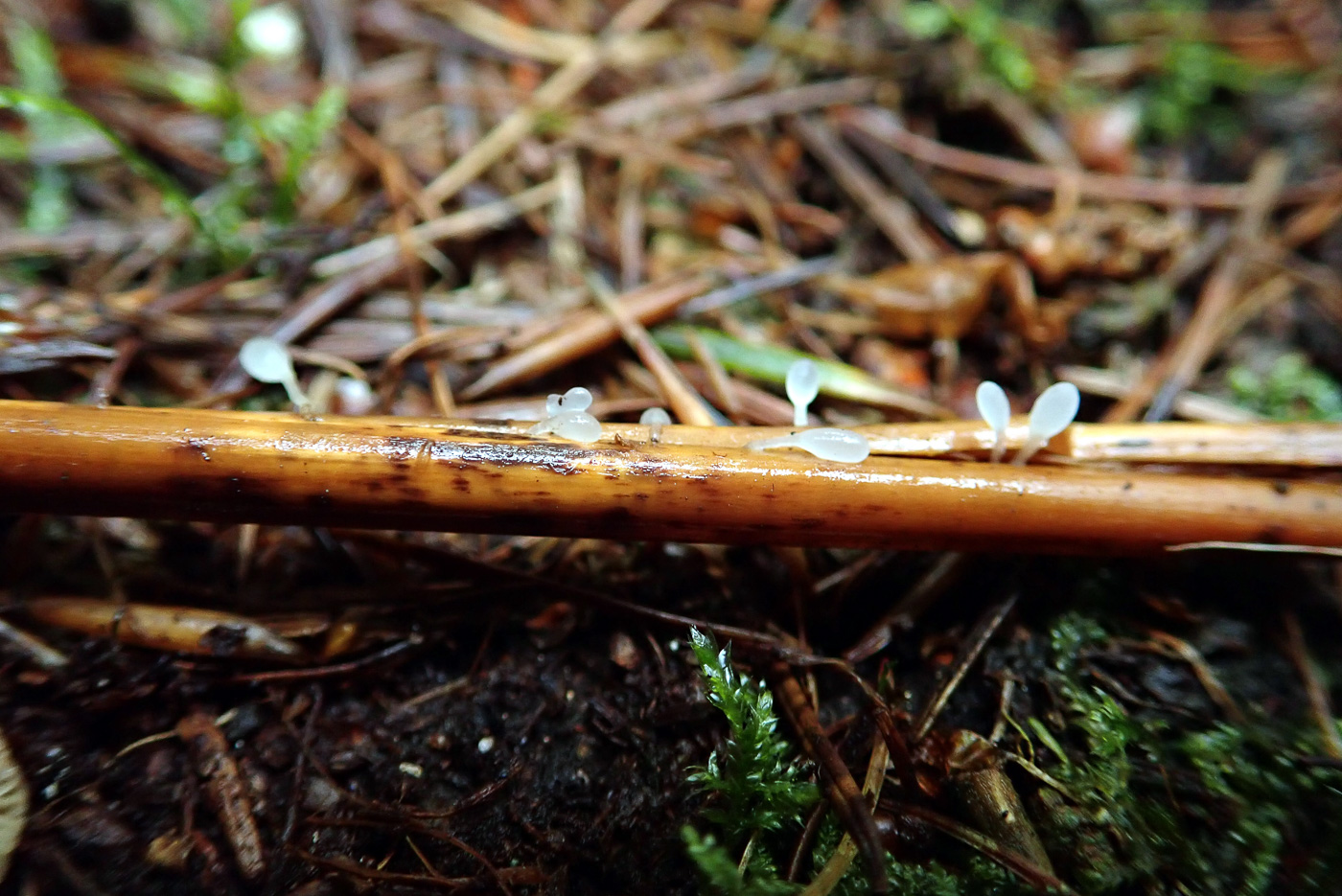
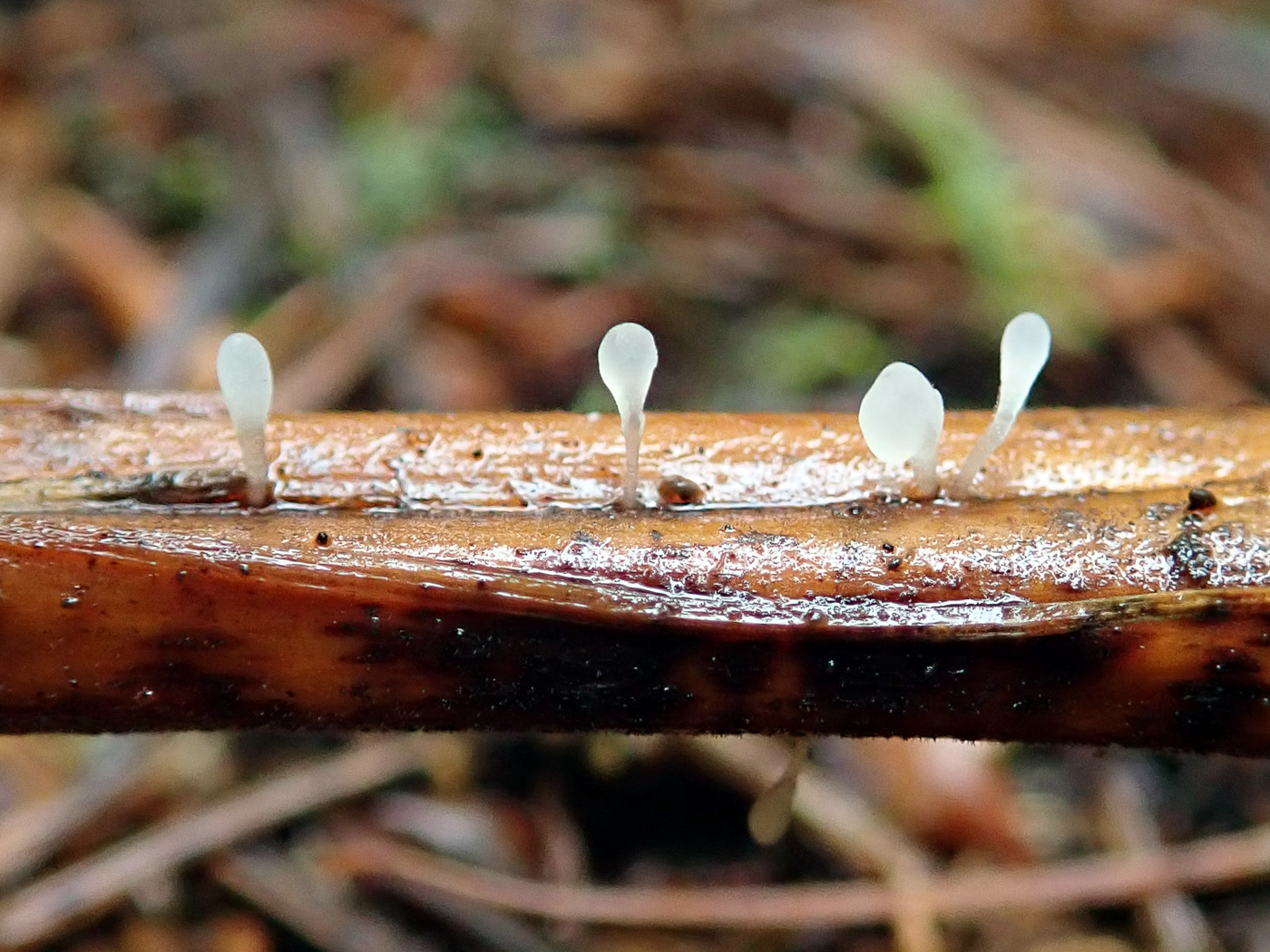 |
October 5th Typhula quisquilliaris (Bracken Club)
Whilst on her knees with her camera Penny Cullington noticed these tiny white stalked fungi on a dead bracken stem. The whole fruit body is under 1 cm tall, about half its height being stem, the top half widening into a clavate swollen head. Not rare but easily overlooked, this species is only found on bracken stems thus is an easy one to name if you can find it!
|
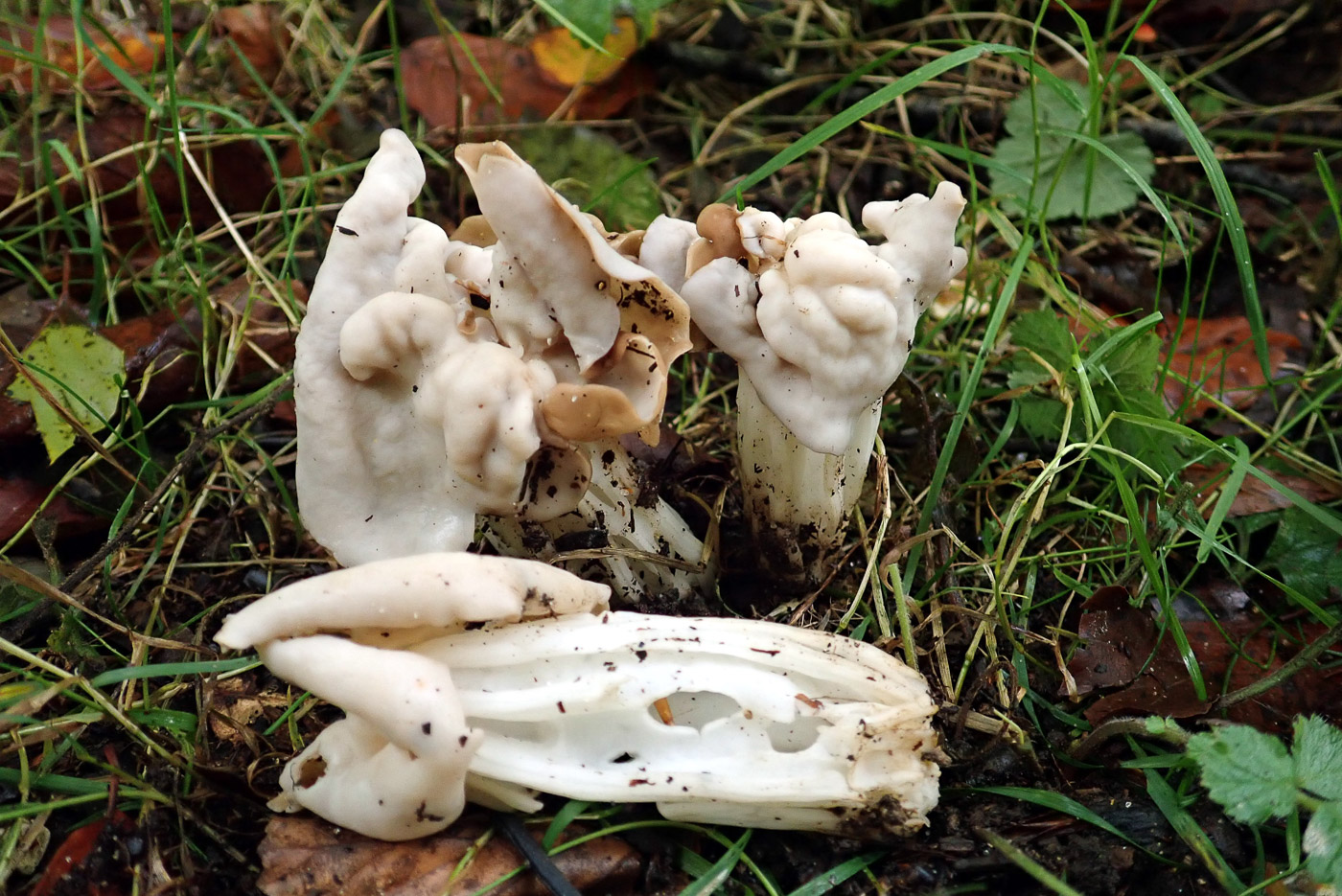
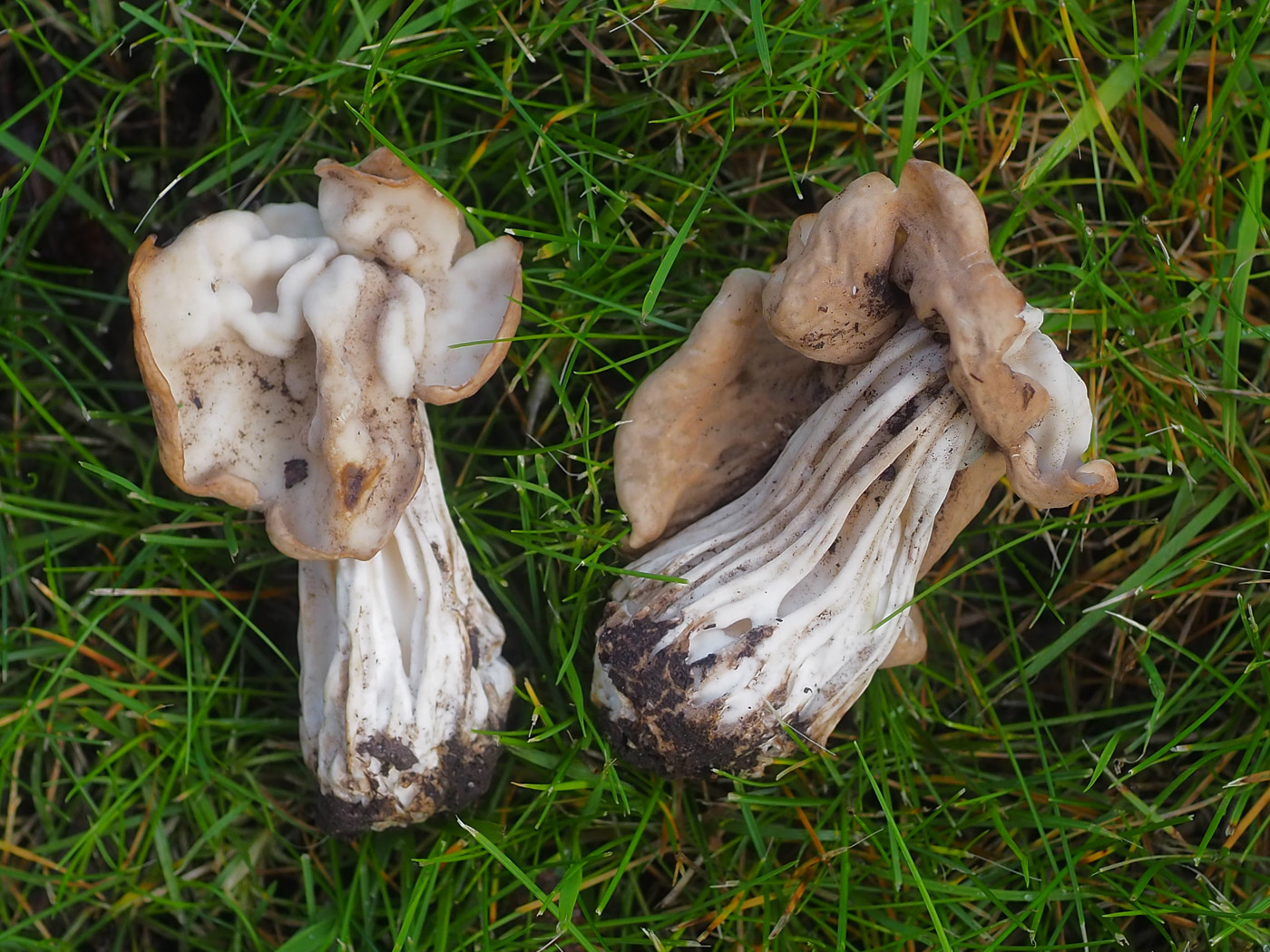 |
October 5th Helvella crispa (White Saddle)
Penny Cullington found several fruit bodies of this beautiful but common Ascomycete growing in a grassy path edge in Common Wood. On the same day John Catterson found his collection in Naphill Common (photo 2). It's an easy one to recognise and can't really be mistaken for anything else, having a thick white distinctly ribbed stem topped with a saddle-shaped and irregularly lobed white head, the underside of which is creamy buff. Today's collection stood about 8 cm tall.
|
October 4th 2020
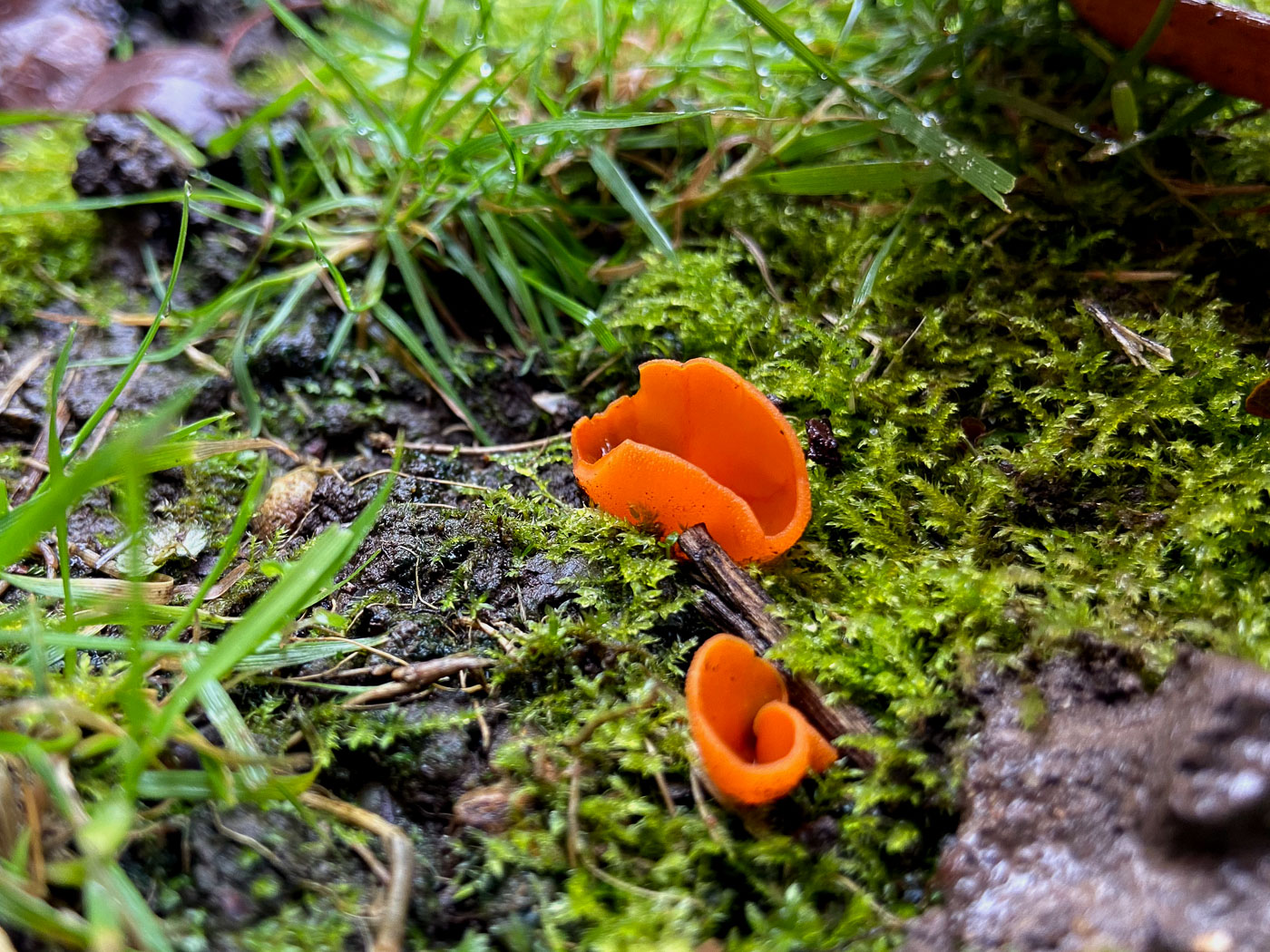 |
October 4th Aleuria aurantia (Orange Peel Fungus)
Sarah Ebdon spotted this attractive brightly coloured cup fungus in mossy soil at the edge of Kings Wood, Tylers Green. Always a nice species to find, this occasional Ascomycete appears much like an orange species of Peziza but is in fact not related. It often occurs on disturbed soil, ruts in tracks, and can sometimes be found in large clusters with fruit bodies getting to about 8 cm across or more.
|
October 3rd 2020
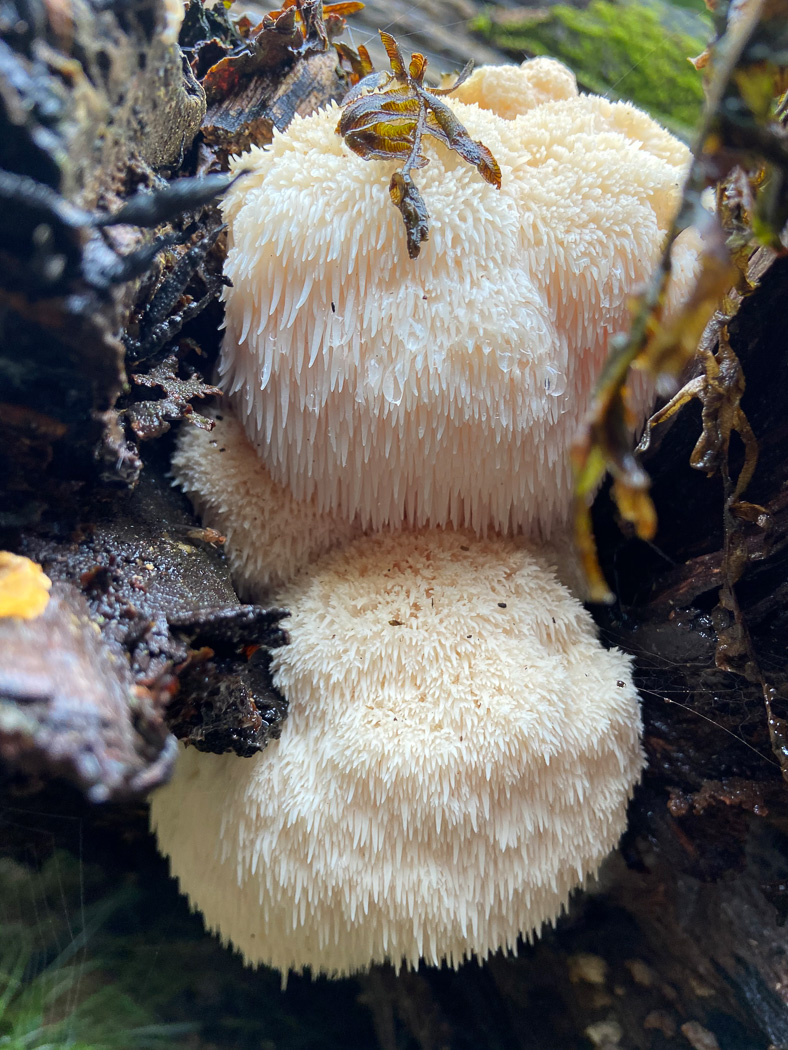 |
October 3rd Hericium erinaceus (Bearded Tooth / Lion's Mane)
Sarah Ebdon and others had been watching out for the return of this amazing very rare fungus in Naphill Common and sure enough it has reappeared, much to everyone's delight and relief. A species found only on mature deciduous trees, especially Beech as here, it forms large white spiny circular masses growing to 20 cm across or more. (Compare also with H. cirrhatum dated Aug 31, a smaller relative and not quite so rare.) Sadly later this season this beautiful species was completely vandalised before coming to fruition.
|
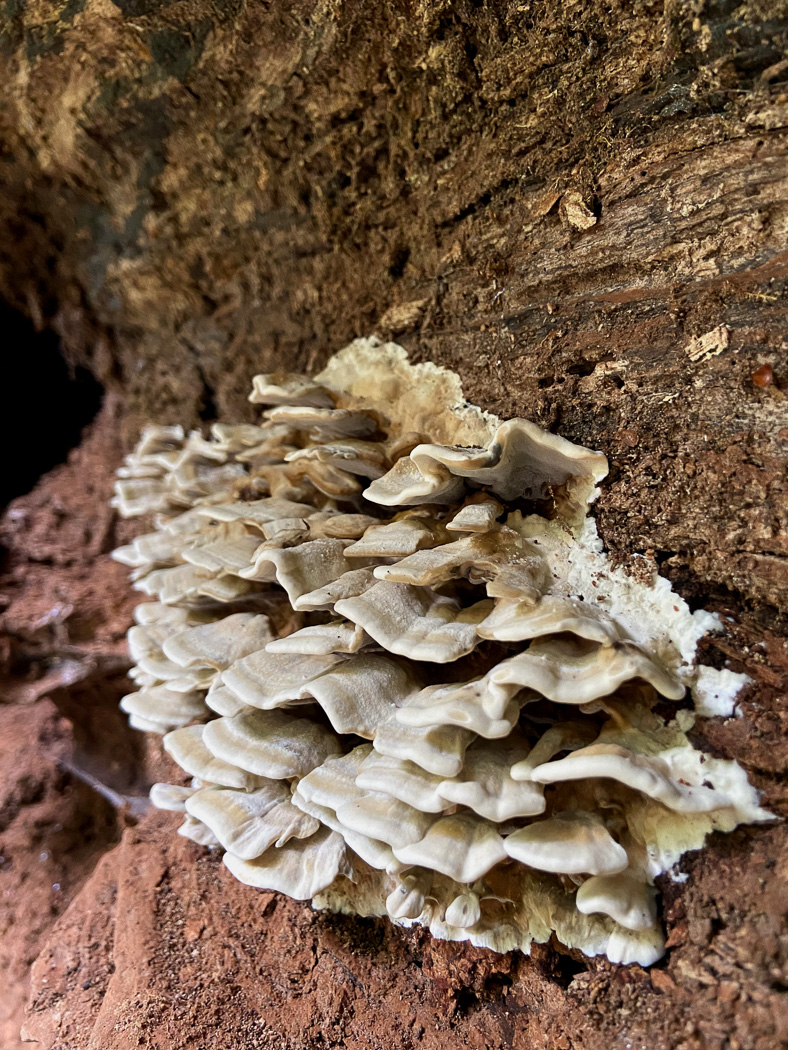
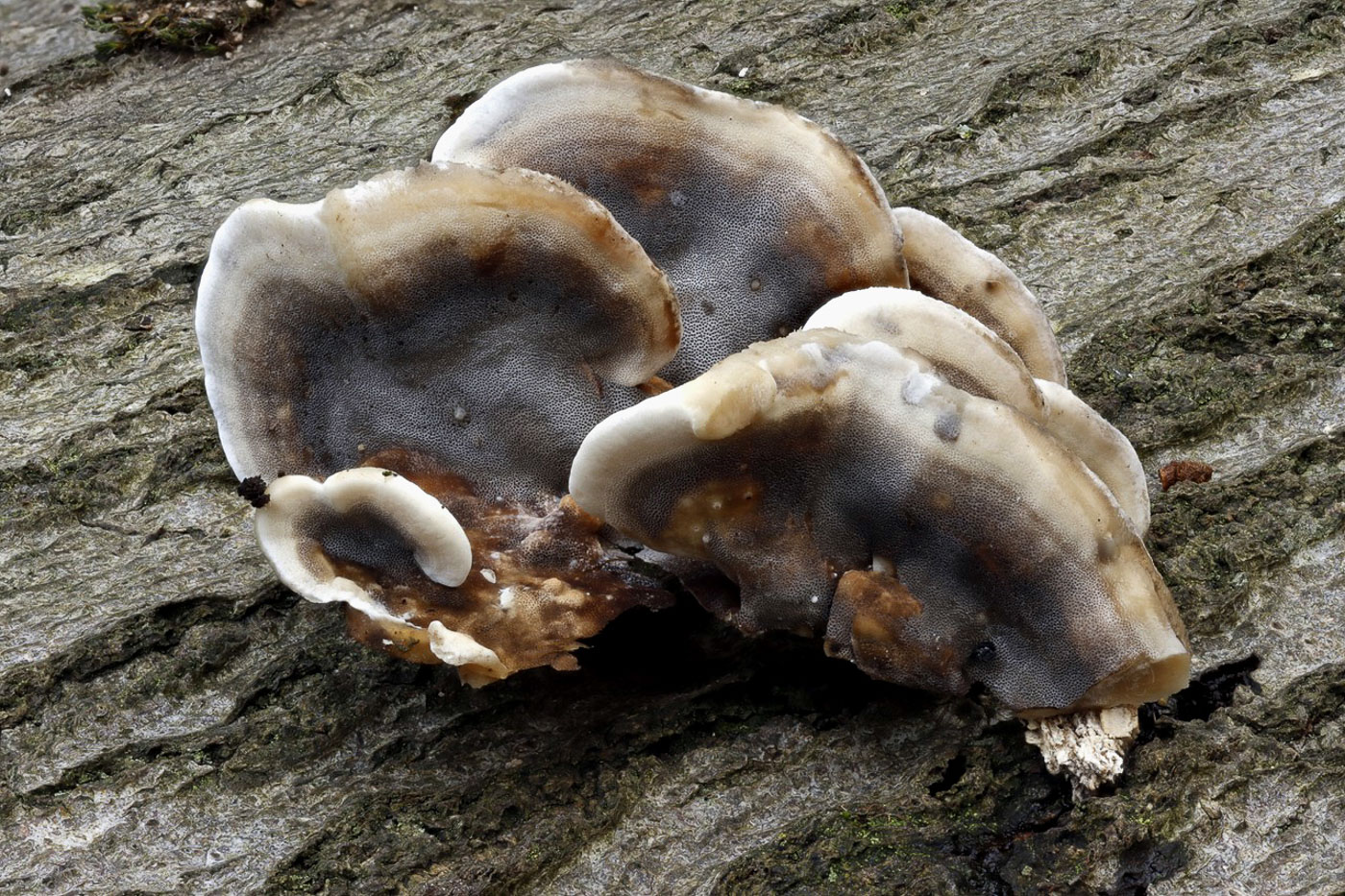 |
October 3rd Bjerkandera adusta (Smokey Bracket)
Sarah Ebdon found this cluster of brackets on fallen Beech in Naphill Common. Another common species of fallen deciduous wood and often appearing superficially very similar to Turkeytail (see photo dated Sept 26) the distinctive feature lies underneath (as with so many species of fungi!). The very fine pores are smokey grey but with a distinct white rim around the edge in contrast to the pores of Turkeytail which are entirely creamy white and also larger - more obvious to the naked eye.
|
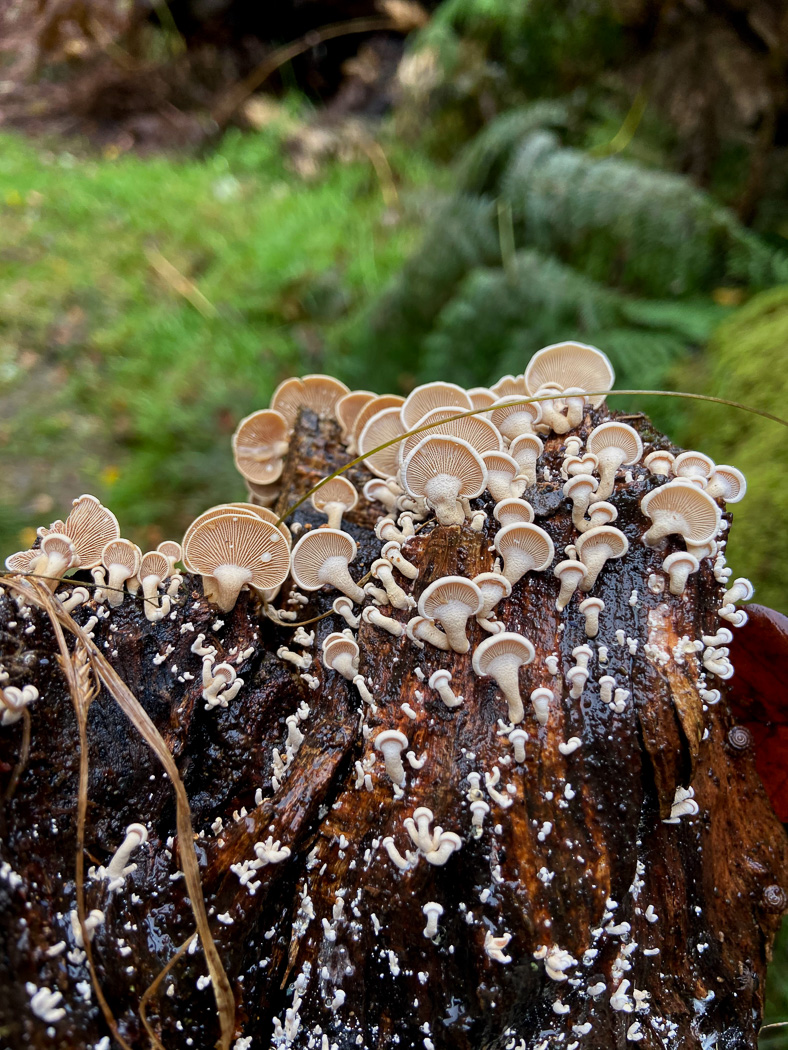
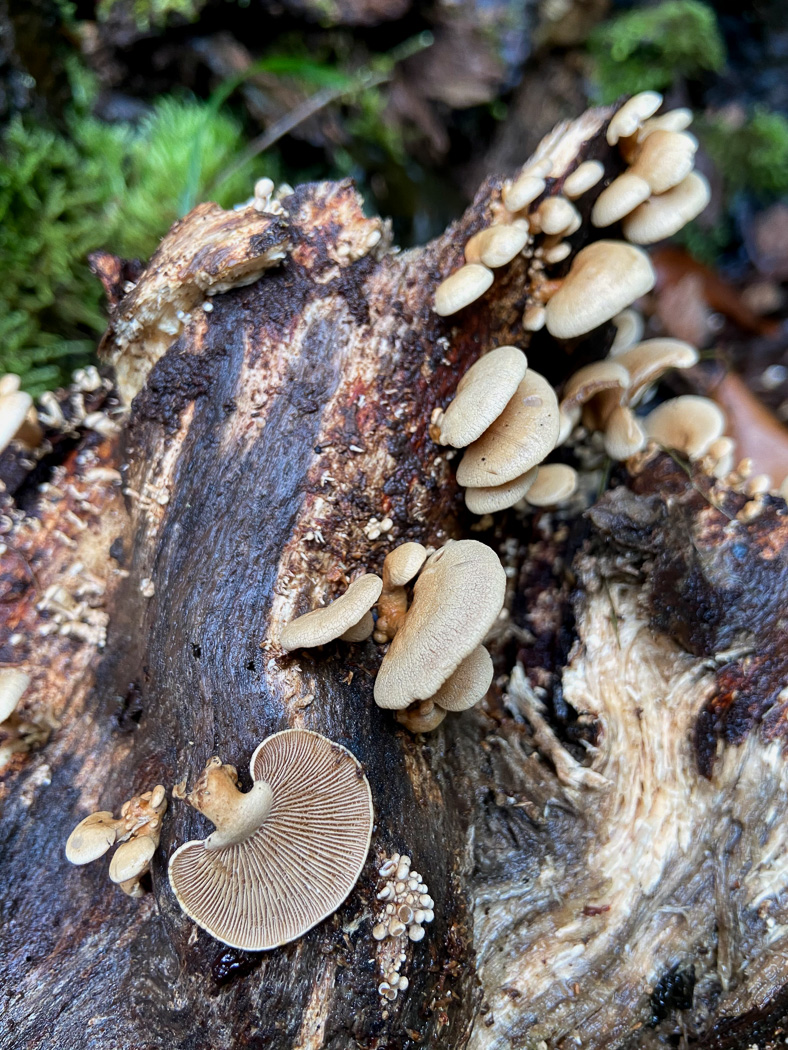
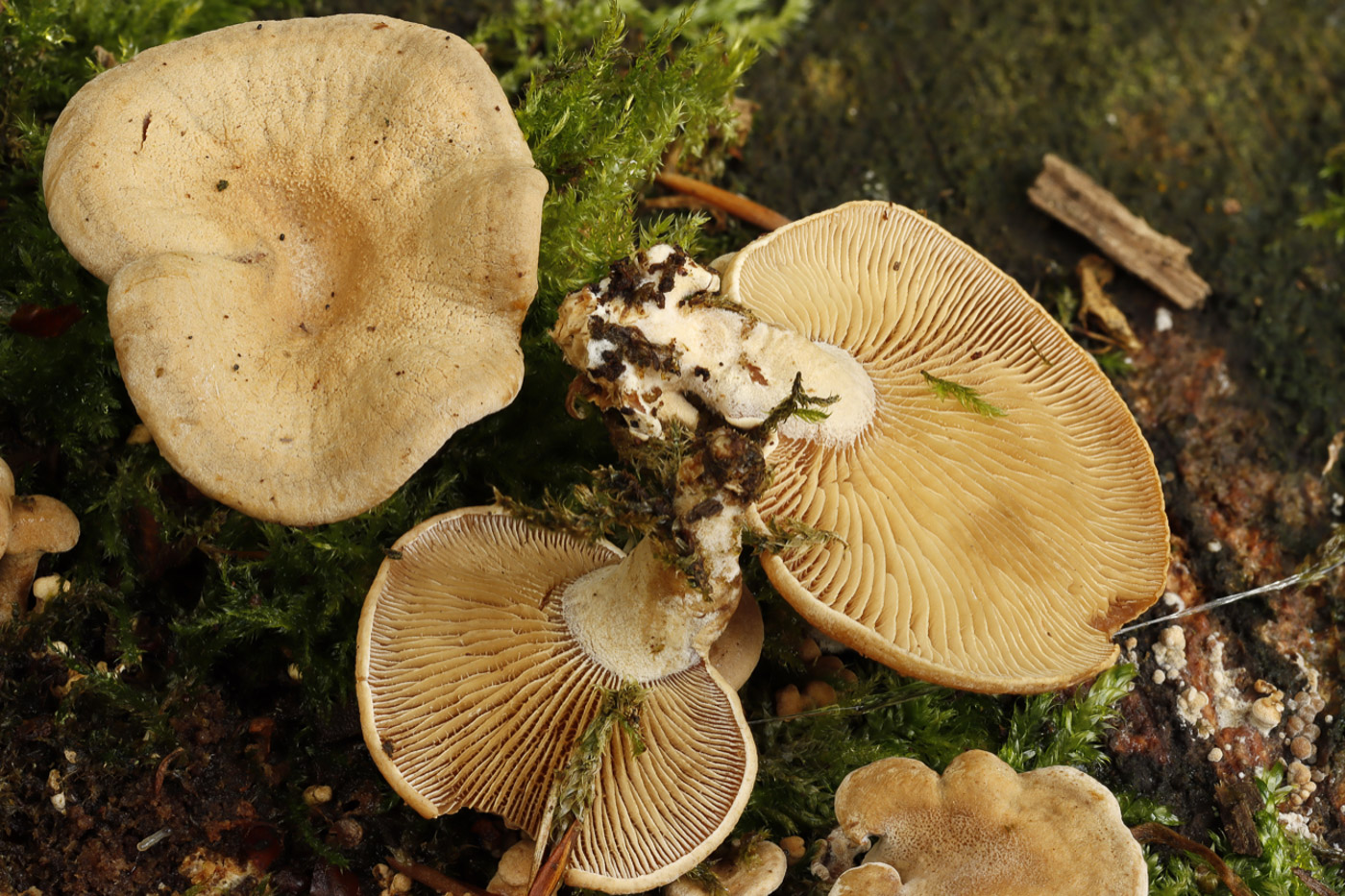 |
October 3rd Panellus stipticus (Bitter Oysterling)
Sarah Ebdon found this collection of small bracket-like mushrooms on fallen Beech in Naphill Common. Caps are typically kidney-shaped and can get to 3 or 4 cms across and the distinctive short stems are never central, always lateral (from the side). They often frequent the sawn off ends of deciduous logs in tiers and superficially appear similar to the genus Crepidotus (also confusingly named Oysterling!), also normally common but yet to be found this season. A trick to confirm this particular species: squeeze a fruitbody between a finger and thumb, then put the finger and thumb together to feel the tacky effect left by the gills. Photo 2, taken by Paul Goby, is of larger specimens in Naphill Common and shows the shape, gills and stem really well.
|
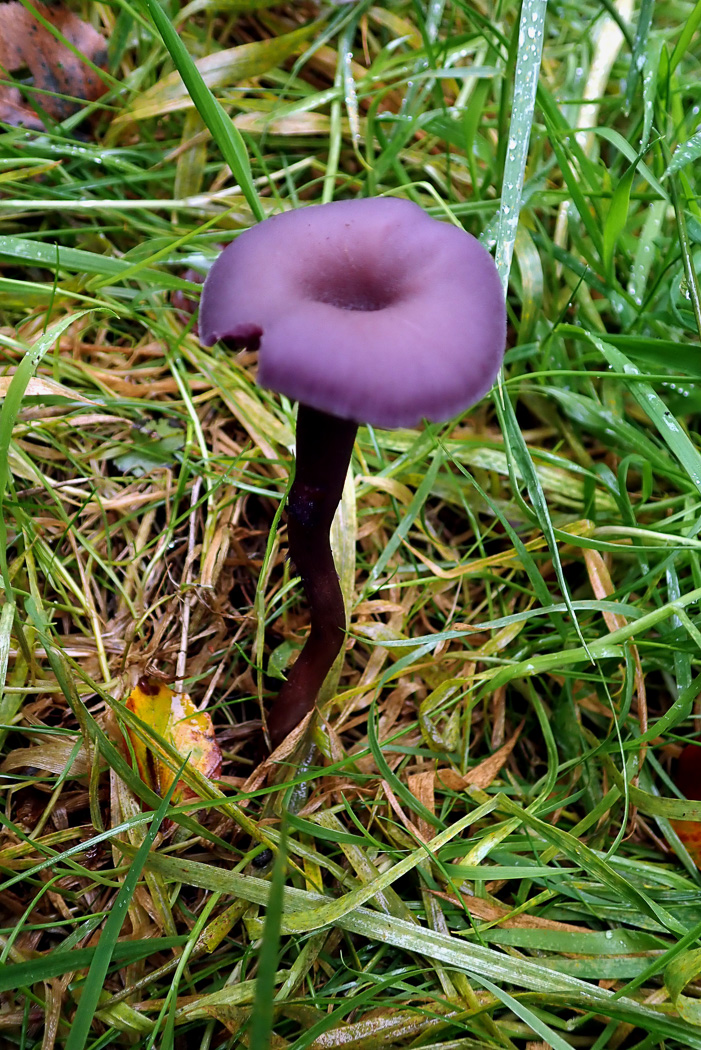
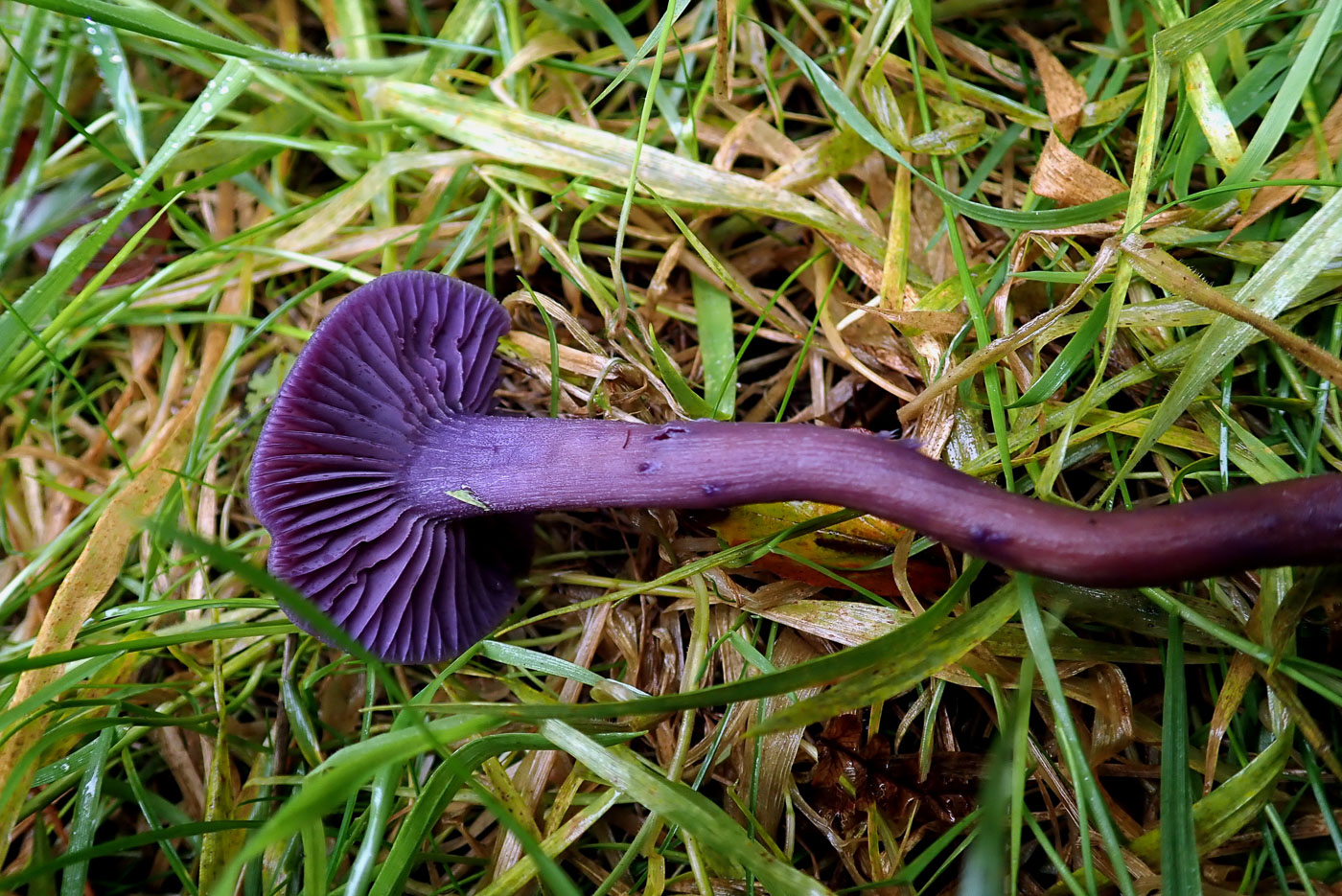
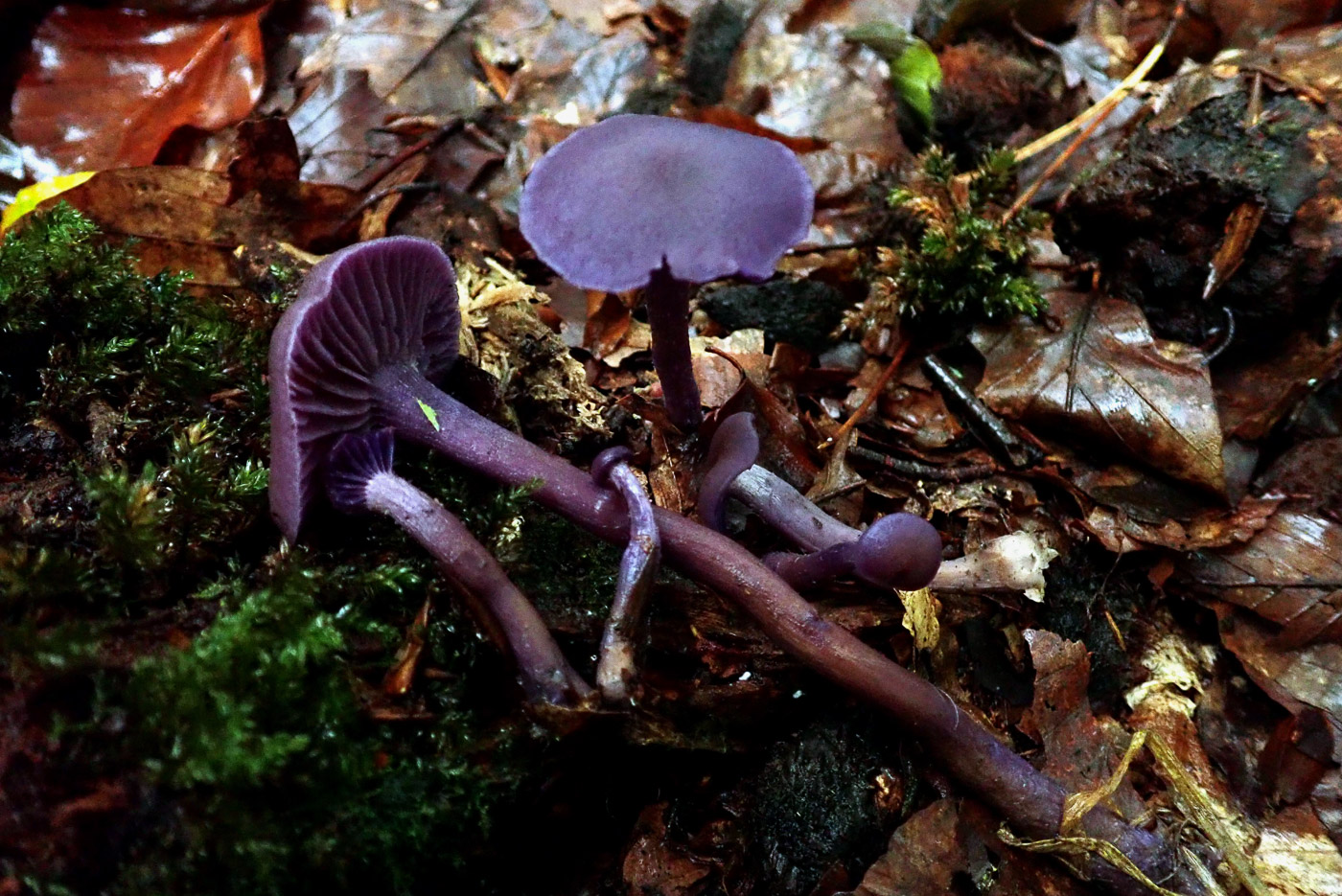
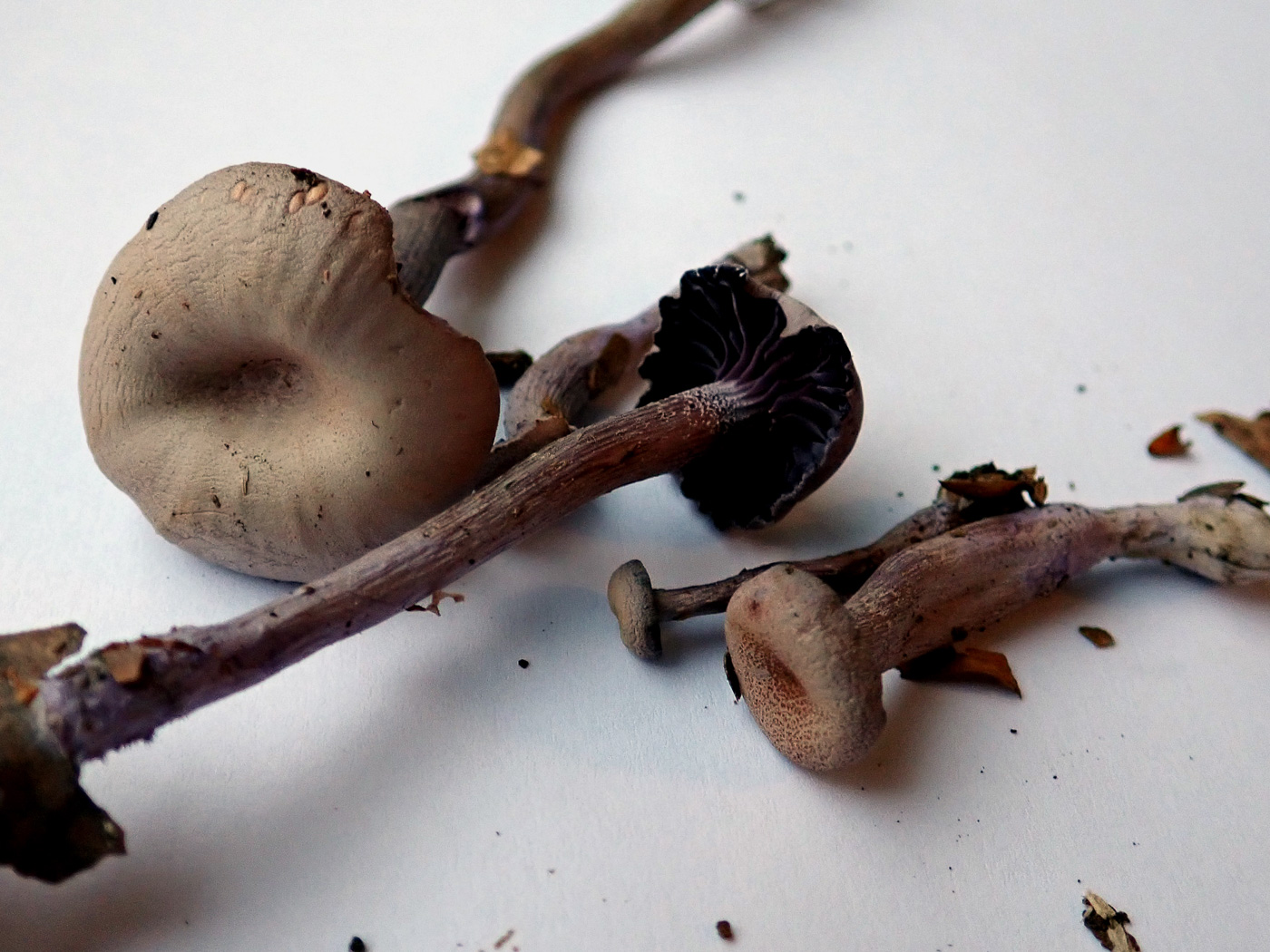 |
October 3rd Laccaria amethystina (Amethyst Deceiver)
This beautiful and often common species was found by Penny Cullington in litter in Penn Wood. Never as common as the closely related Deceiver (see photo and notes dated Oct 1st) and in some years quite scarce, the colour when fresh and moist as today is stunning though somewhat similar to Inocybe lilacina (see photo dated Sept 22) which, however, has differently coloured gills. The first large singleton (cap about 4 cm across) was then moved to join some smaller more typical specimens. Note how easy it is to be deceived, however, when this same collection was dried out and fades. It is the widely spaced gills which remain amethyst in colour which are the safest clue to identity.
|
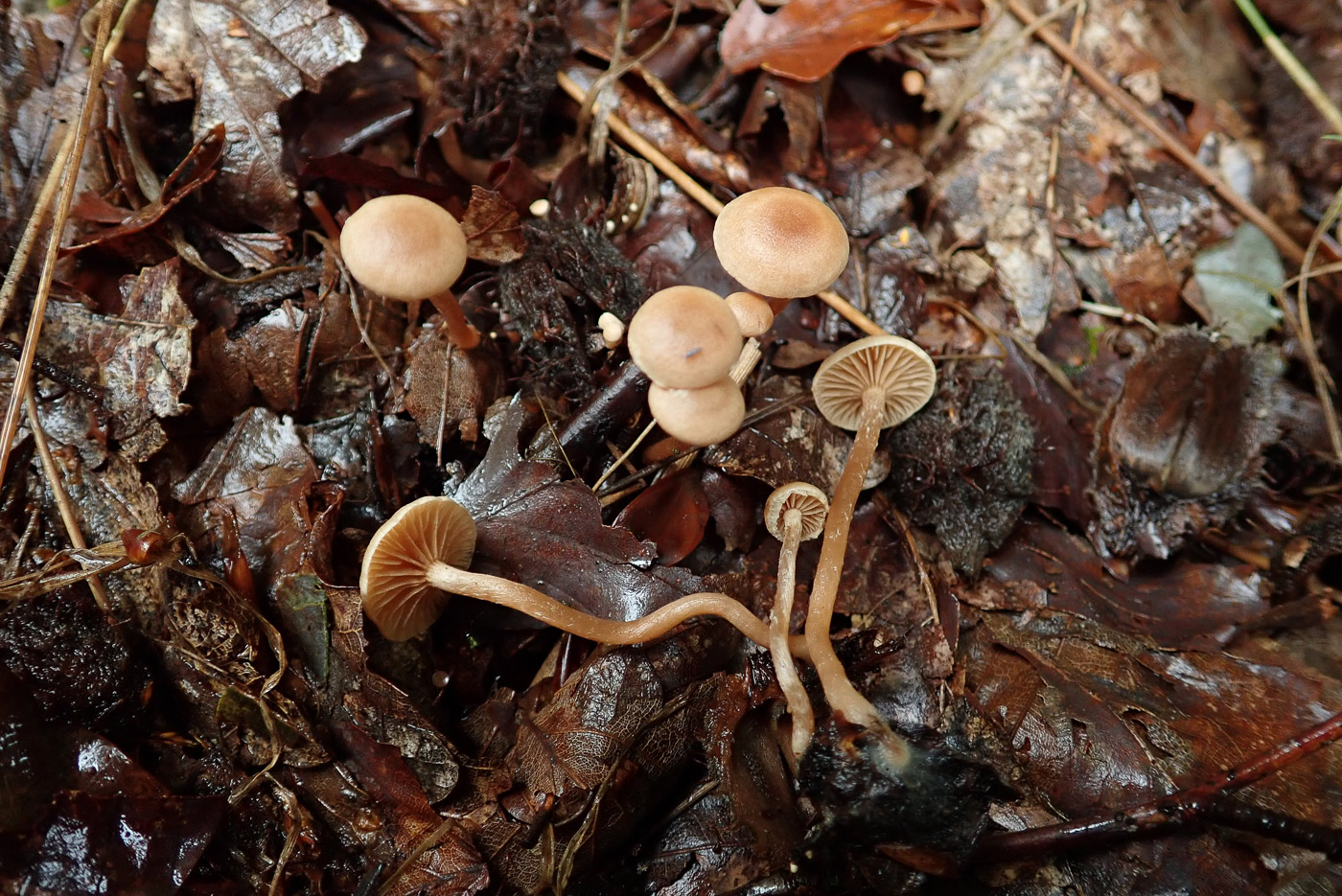
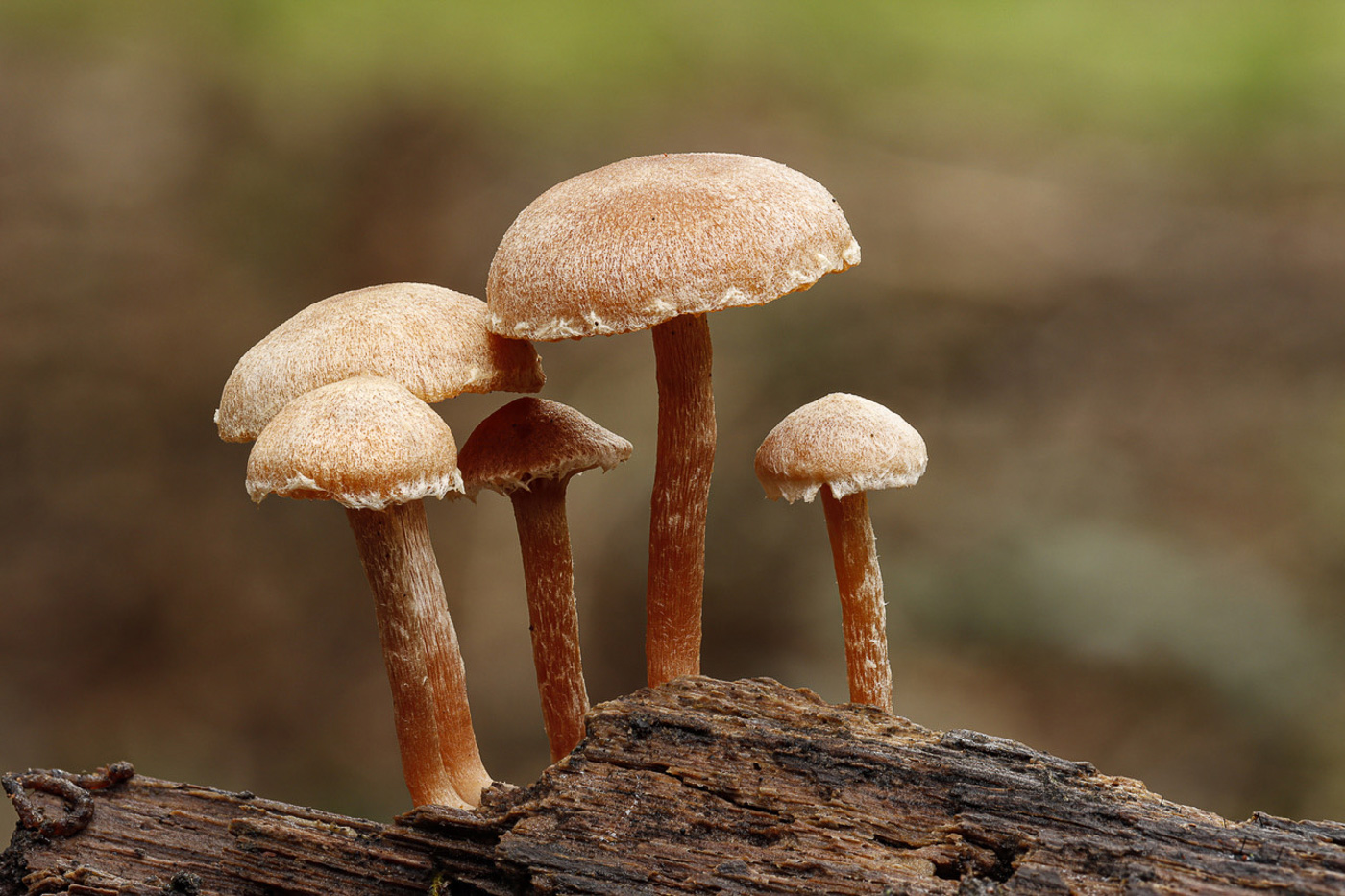
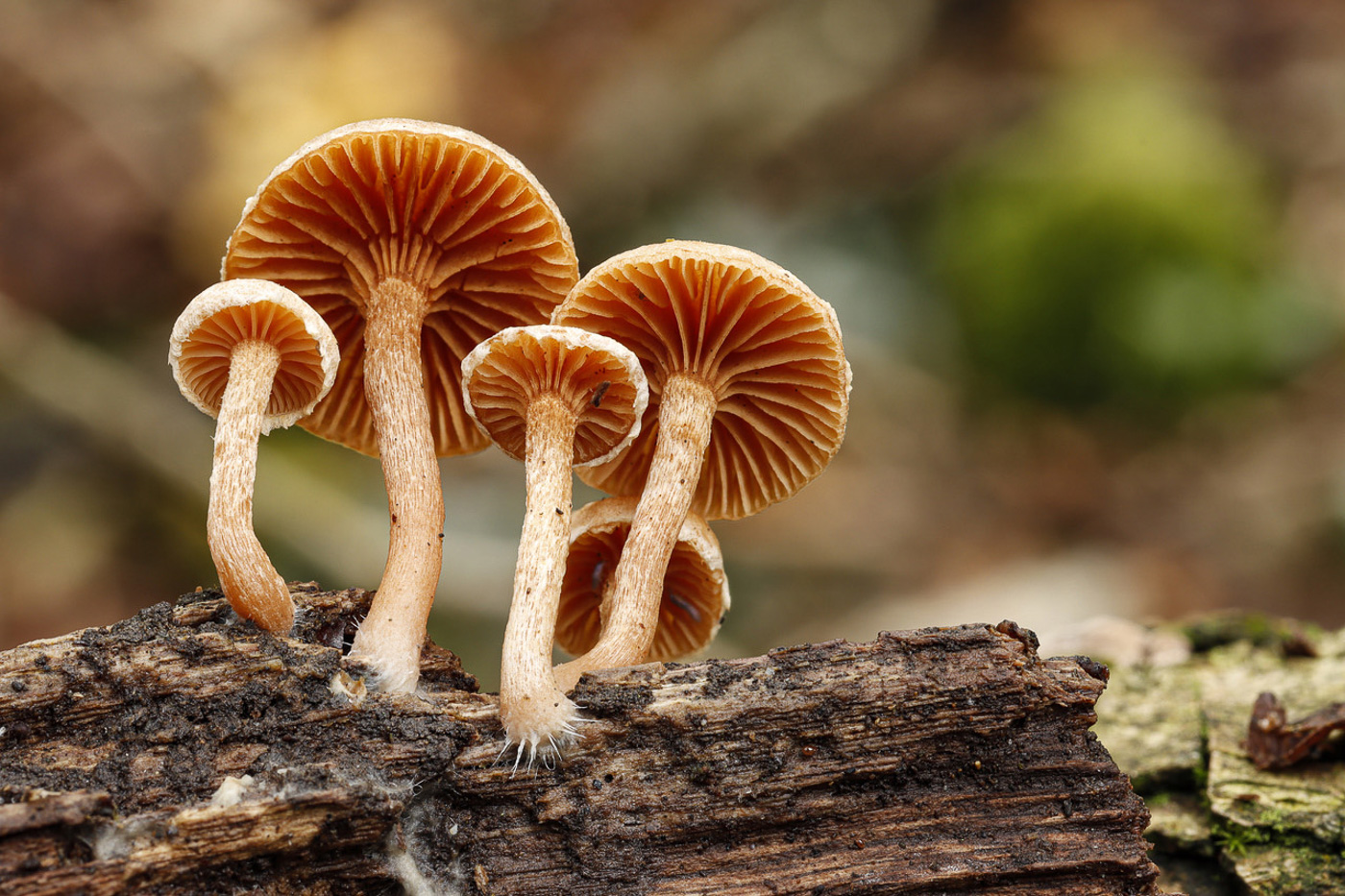 |
October 3rd Tubaria furfuracea (Scurfy Twiglet)
This group was growing in woody litter in Penn Wood, found by Penny Cullington. This is one of our commonest LBJs (Little Brown Jobs) and frequents woody remains, woodchips, sometimes apparently on soil, even in lawns on submerged woody bits. Sometimes found in large colonies, caps, gills and stem are all the same soft pinkish to cinnamon brown, caps fading when dry and often with white flecks (the scurf referred to in the common name), gills can be more decurrent (sloping) than shown here, and texture is soft, quite fragile. The scurf on today's specimens had long since been washed off by rain. . However, Paul Goby's two photos taken two weeks later in Naphill Common are good examples and show the scurfy caps and stems as well as the slightly decurrent gills.
|
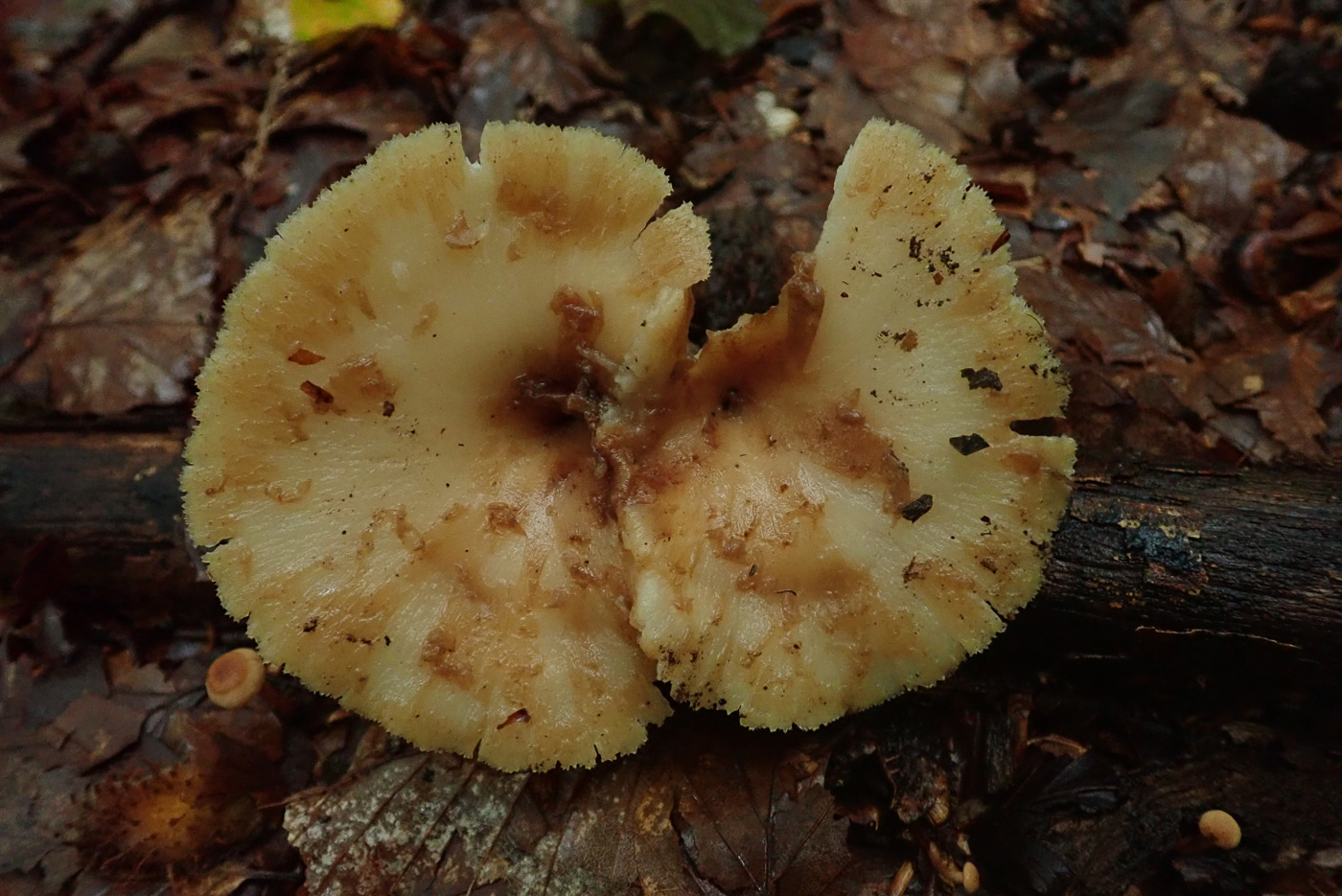
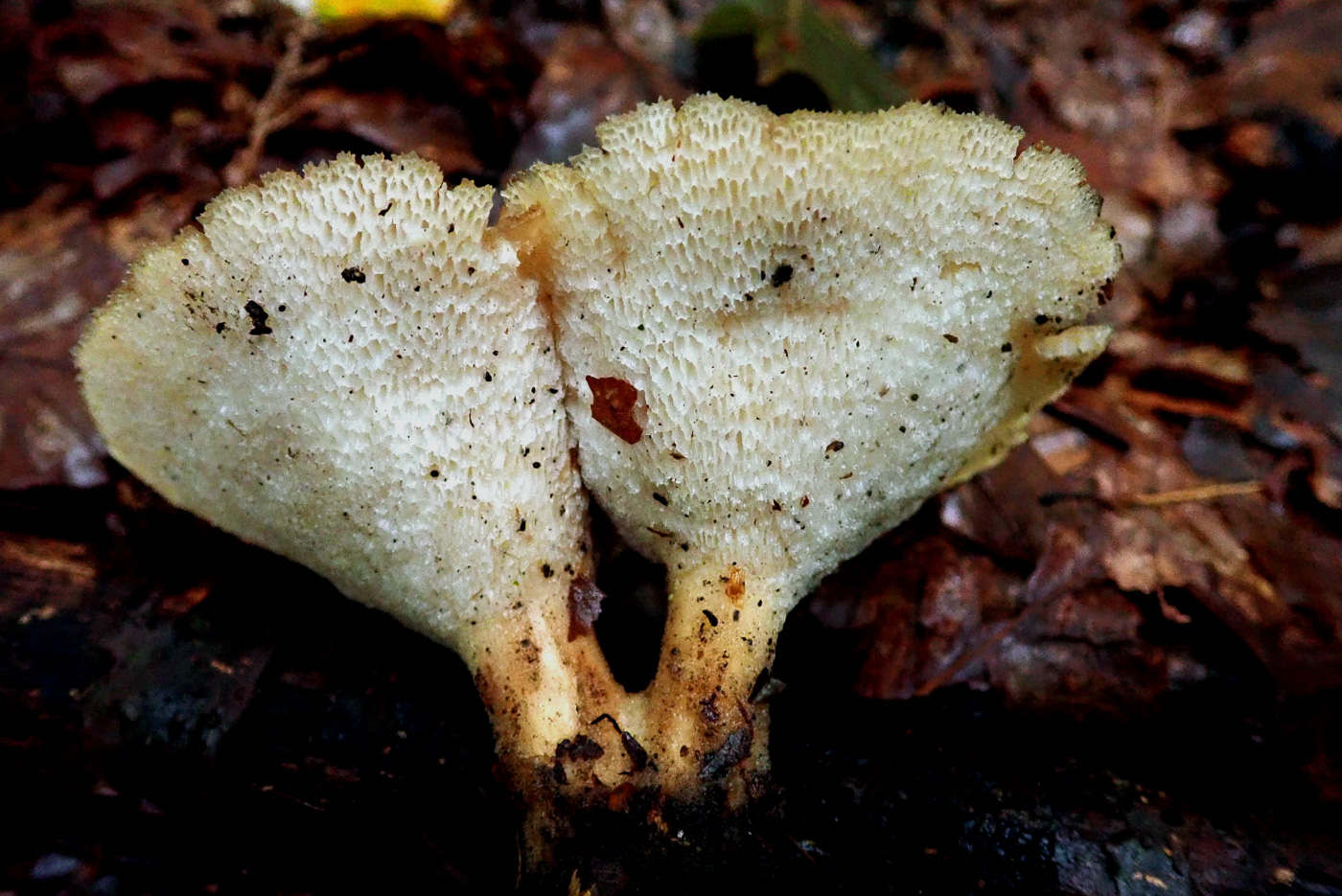
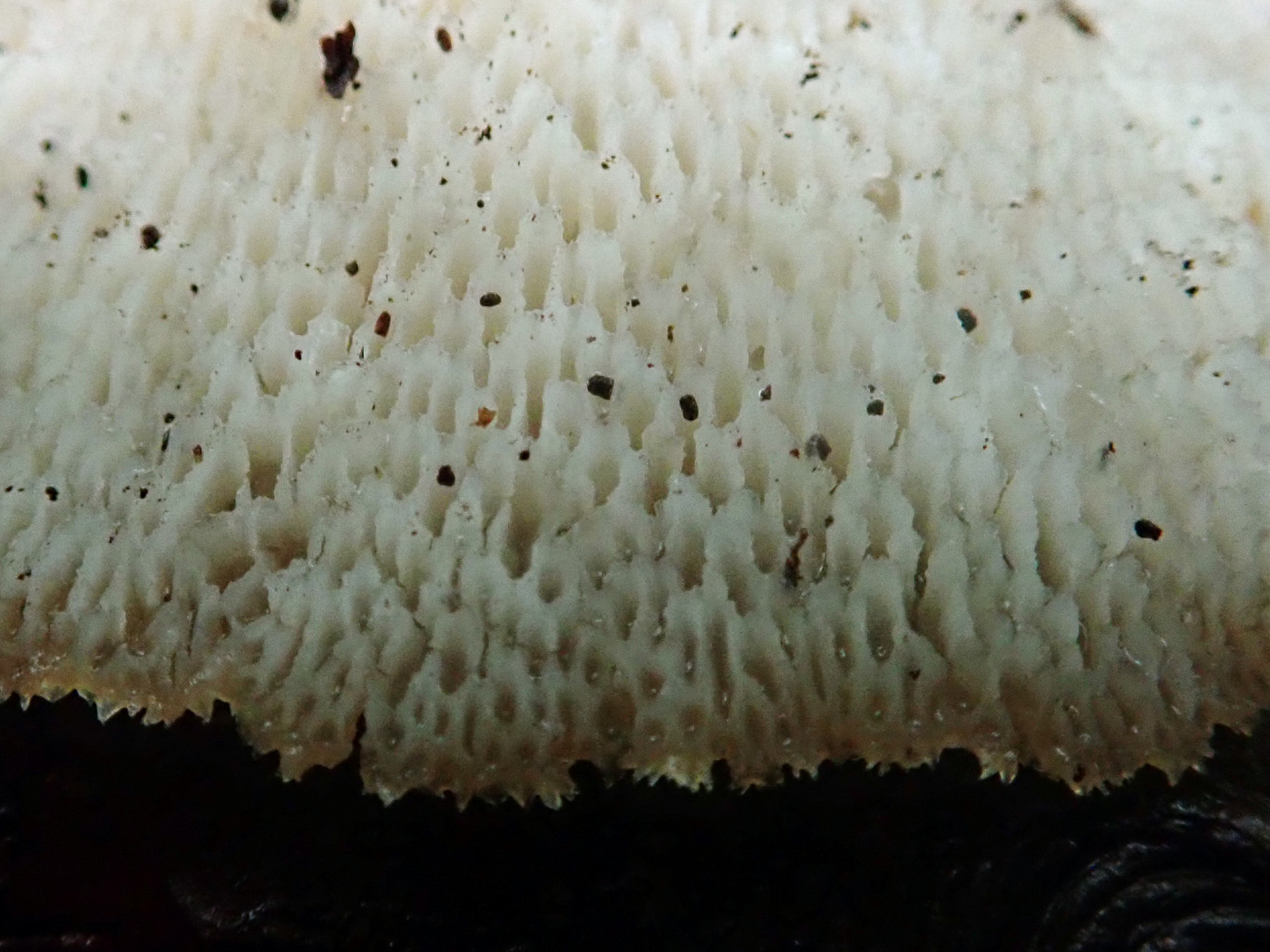 |
October 3rd Polyporus ciliatus (Fringed Polypore)
Penny Cullington found this conjoined pair on fallen Beech in Penn Wood. Not a common Polypore, and superficially similar in colour and shape to the very common P. leptocephalus (Blackfoot Polypore) - yet to be included, however - key features are the ciliate (finely frilly) margin and the widely spaced elongated oval shaped pores (see photos 2 and 3). In comparison, Blackfoot Polypore has a distinct black lower stem and much smaller finer pores.
|
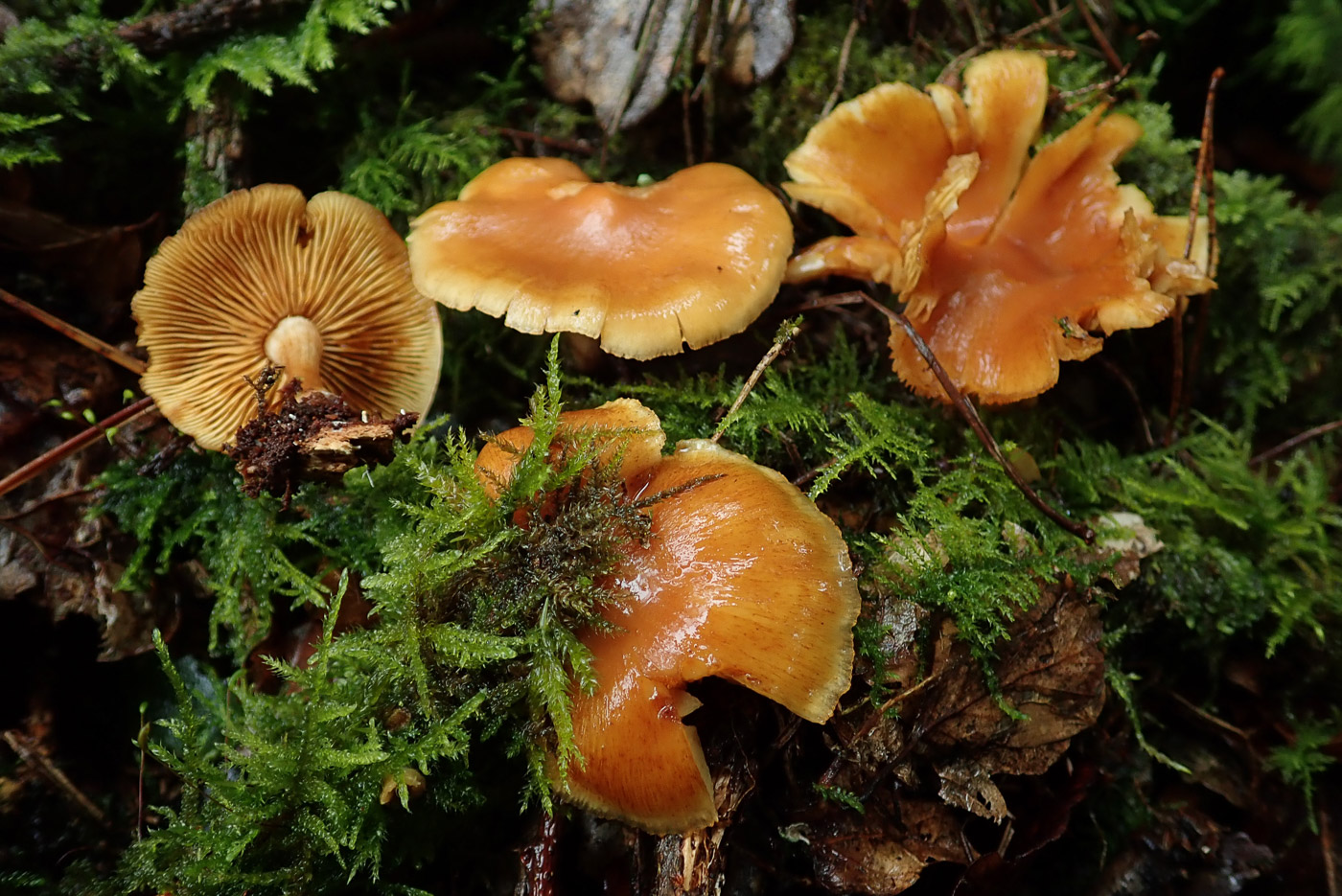 |
October 3rd Gymnopilus penetrans (Common Rustgill)
This was found on fallen conifer wood in Penn Wood by Penny Cullington. It is commonly on fallen branches, stumps, woodchips of conifer, sometimes in large numbers, but also occurs on Beech. Caps get to about 6 cm though it's usually smaller than this, so a much smaller species than G. junonius (see dated 18th). To tell from other brown capped wood inhabiting mushrooms, turn over to see the typical ochre to rusty gills.
|
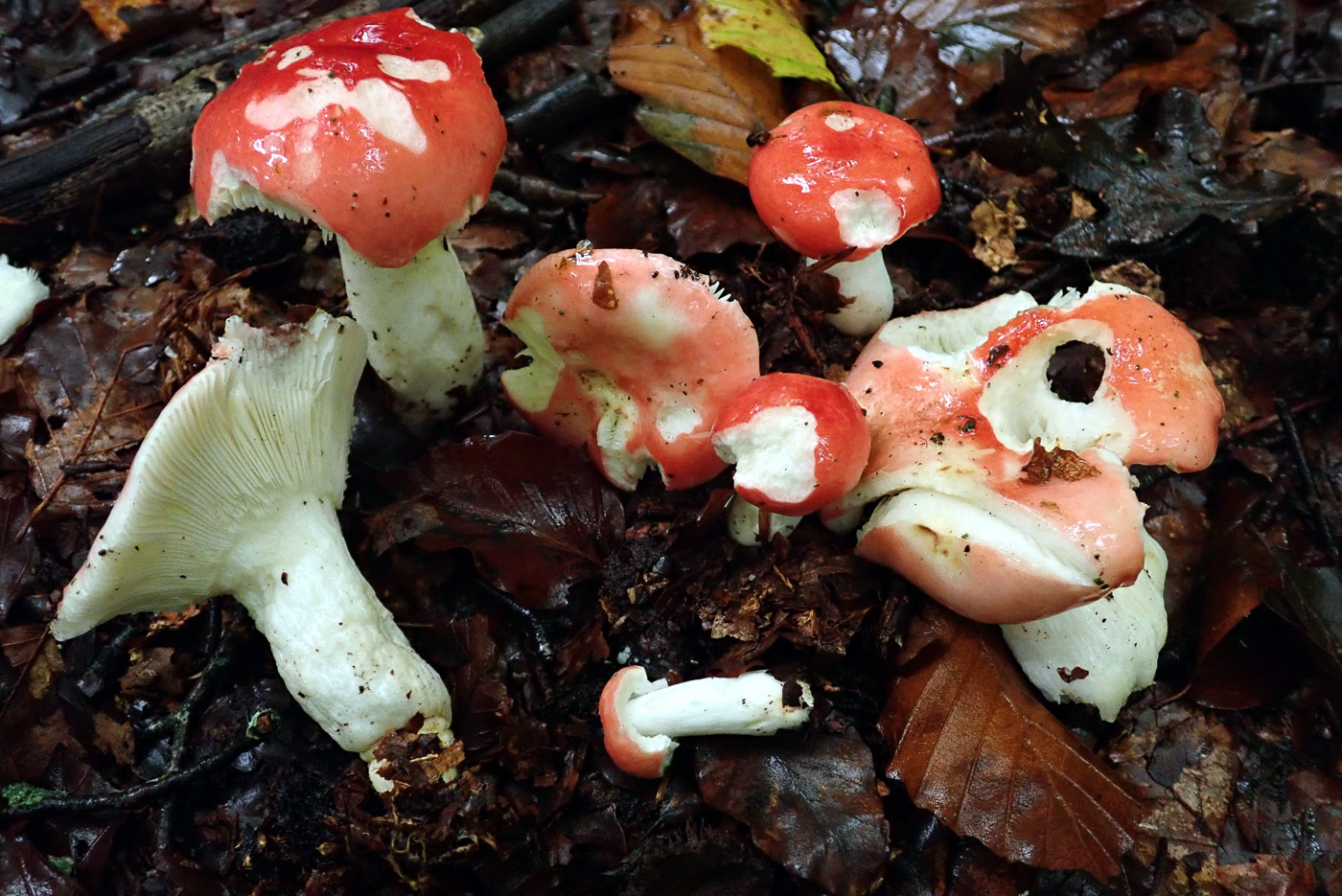 |
October 3rd Russula nobilis (Beechwood Sickener)
One of our commonest Brittlegills (previously R. mairei), only rather eaten singletons had been spotted until today in Penn Wood under its host tree and found by Penny Cullington. Yet another red-capped Brittlegill, this one has a much less firm feel than R. rosea (see dated 1st) and the cap skin peels readily from the edge to about halfway in, often leaving very pale pink flesh beneath. The colour is a soft pinkish rose red, often with cream patches, the gills are white and despite its common name most caps one finds have been eaten by slugs, squirrels, mice for whom it is a favourite! Note, not normally as shiny as seen here in the rain.
|
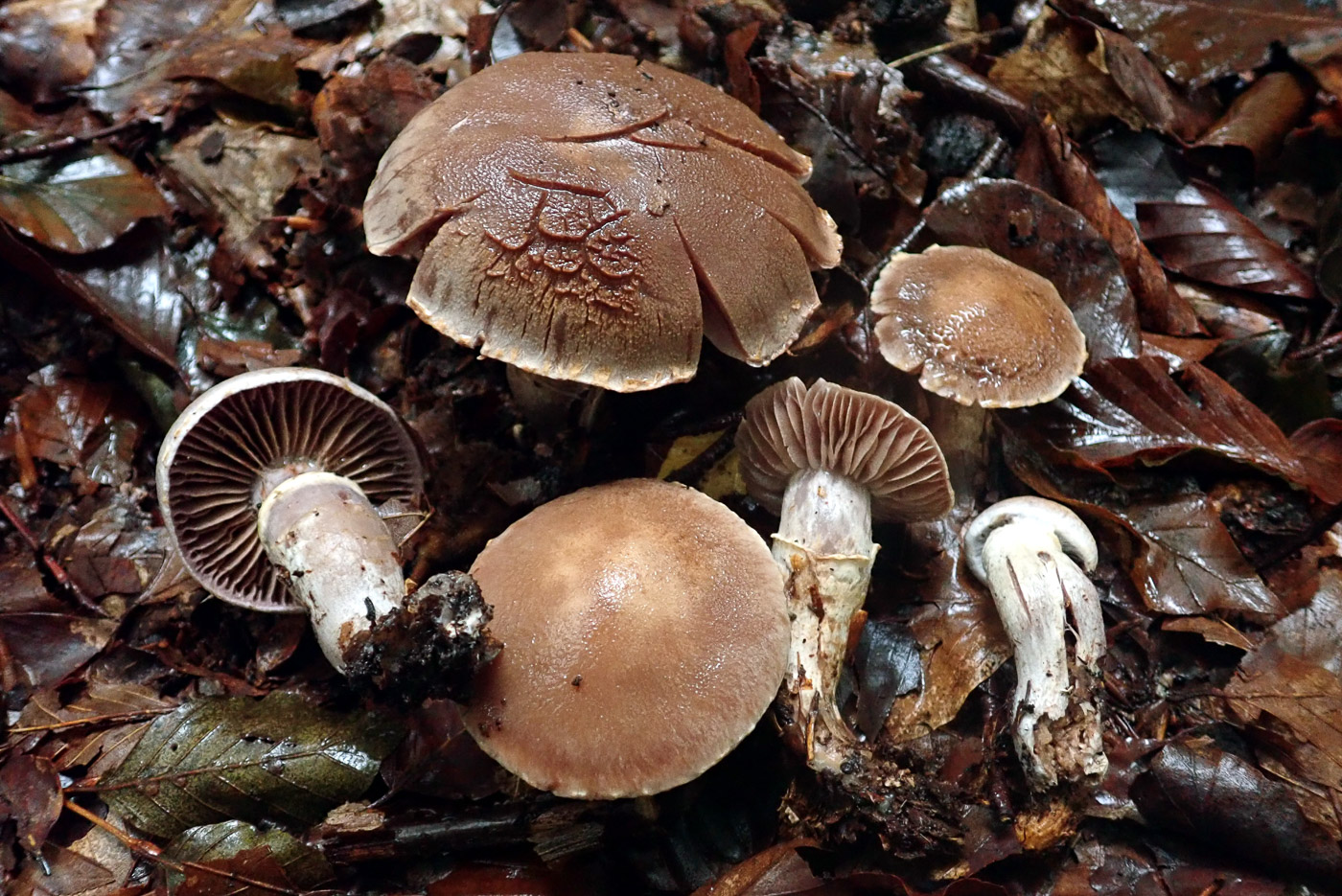
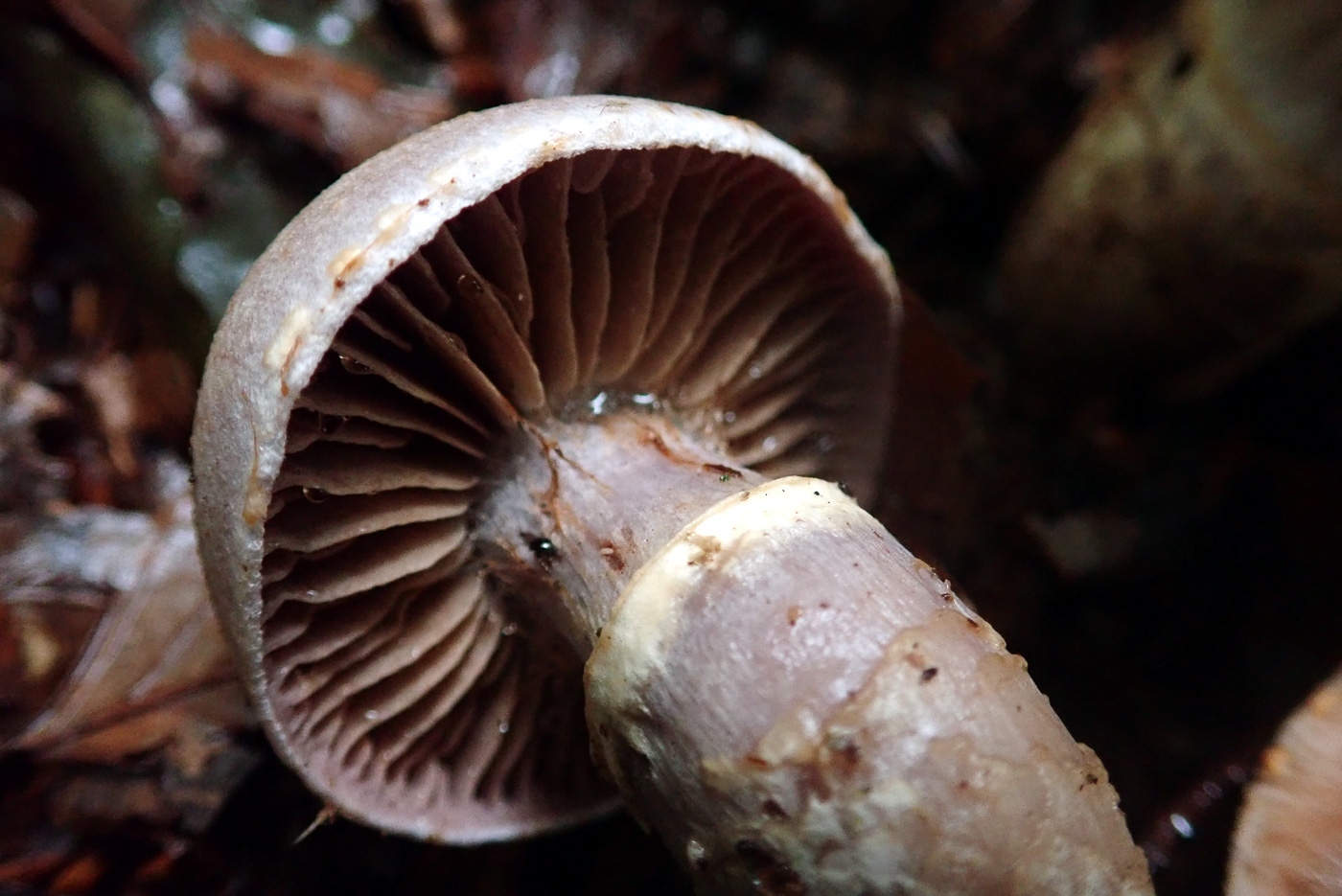 |
October 3rd Cortinarius torvus (Stocking Webcap)
Penny Cullington found this collection in Penn Wood under Beech, its most common host. It is one of several of the dry capped Telamonia group of Webcaps (of which there are hundreds!) which is recognisable in the field. Given the host tree, the brown caps tend to have a paler whitish edge, the gills are widely spaced with a violet tinge especially when young, but the telltale feature is the obvious membranous sheathlike white upturned ring on the stem reminding of the top of a sock or stocking (hence the common name) which remains into maturity. it also has a sweetish fruity smell.
|
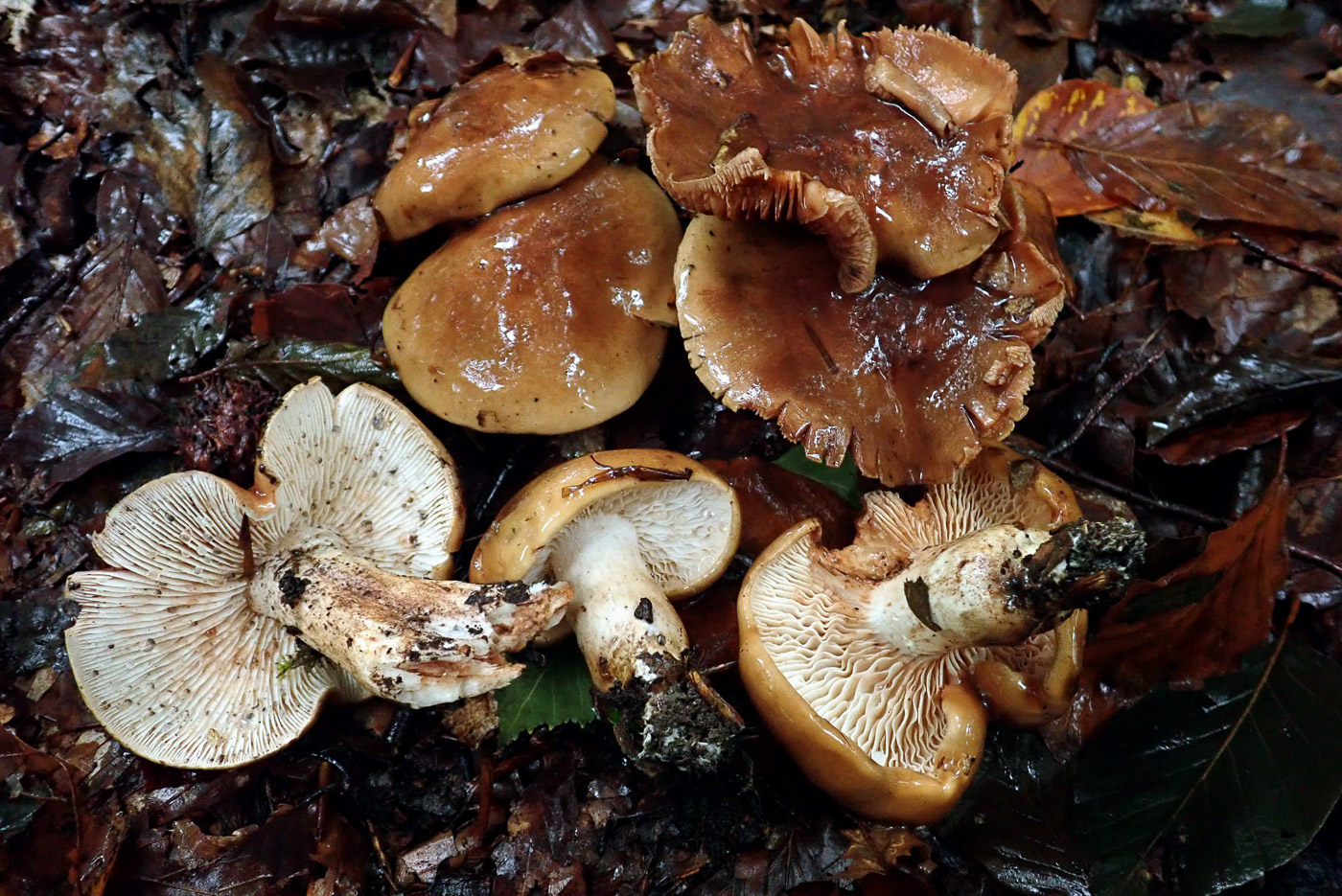 |
October 3rd Tricholoma ustale (Burnt Knight)
Penny Cullington found this collection under Beech at Penn Wood. Quite a common Knight, it is host specific with Beech and in wet weather like today the tawny brown caps are shiny and slimy but in dry weather they blend into the leaf litter and are harder to spot. Caps can get to 7 cm across or more and the pale gills tend to be crinkly and become brown spotted.
|
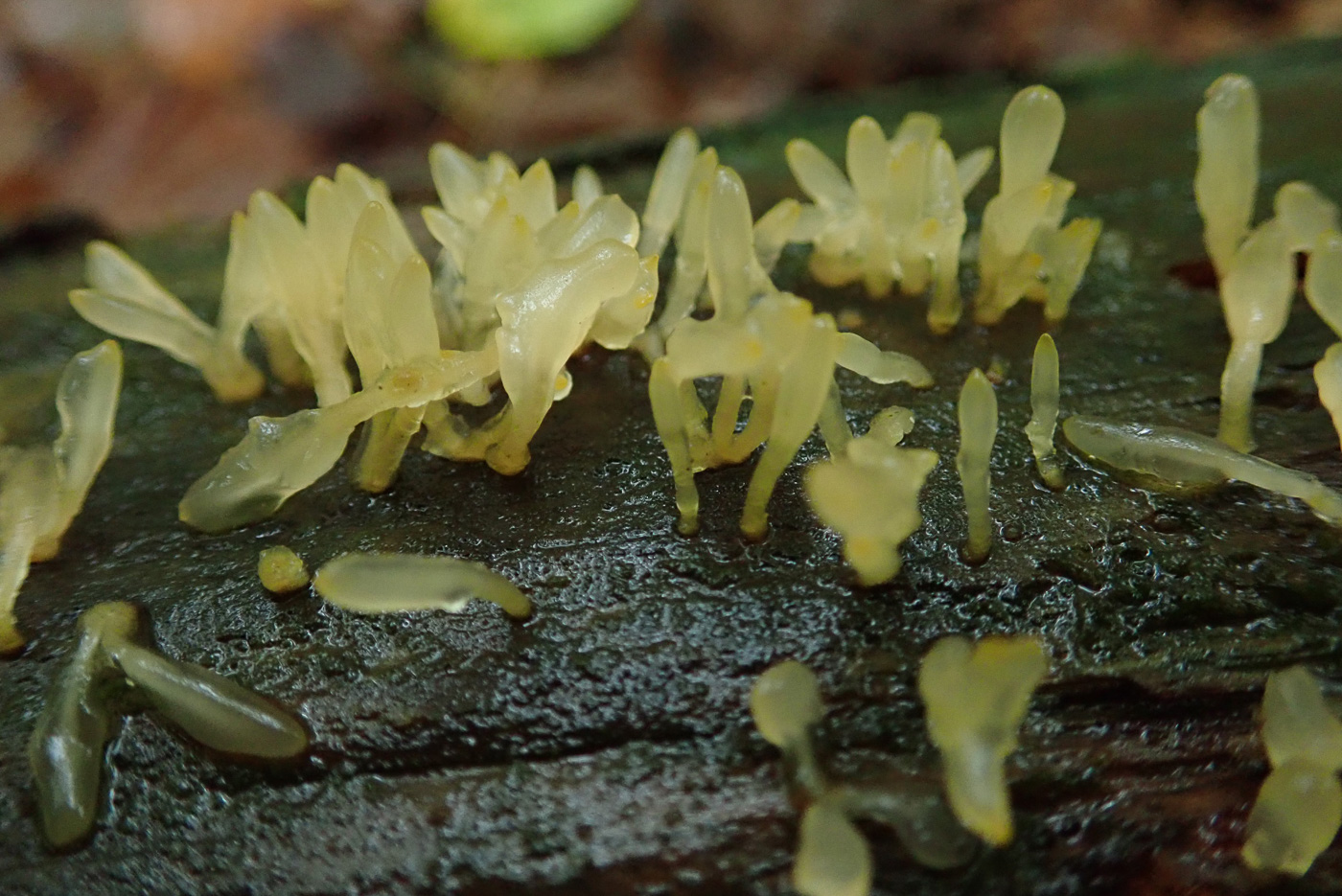
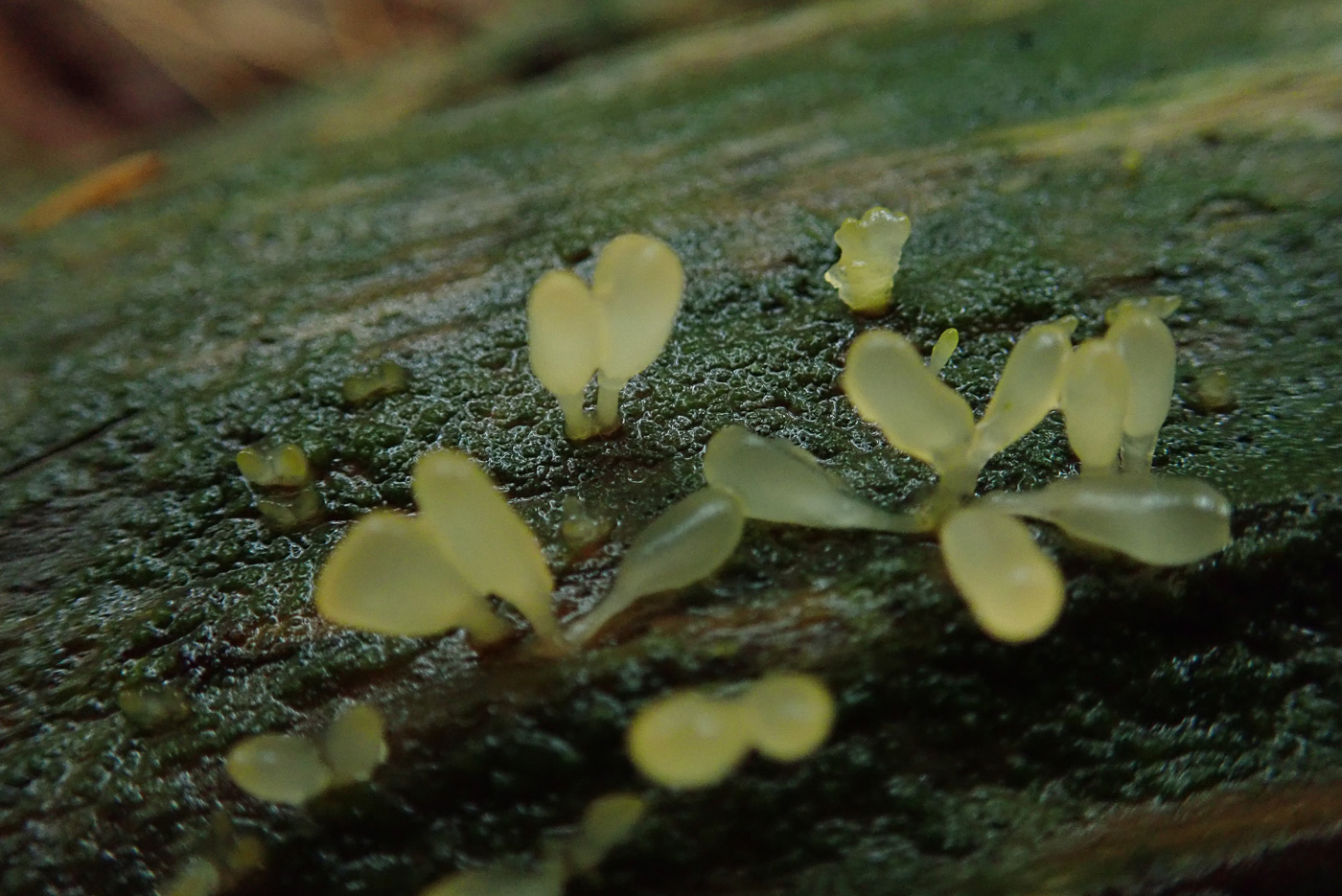 |
October 3rd Calocera pallidospathulata (Pale Stagshorn)
This cluster was found on fallen bare conifer at Penn Wood by Penny Cullington. Clearly paler and much smaller than the bright yellow of C. viscosa, also found today, this species is only up to 1 cm tall and is slightly flattened and swollen 'spoon-shape' (see photo 2 in particular). It is common on fallen conifer but can also occur on rotting bare deciduous wood when possibly confusable with C. cornea (see photo dated Sept 24). The typical 'spathulate' shape and paler colour of today's species, however, should suffice to separate the two species.
|
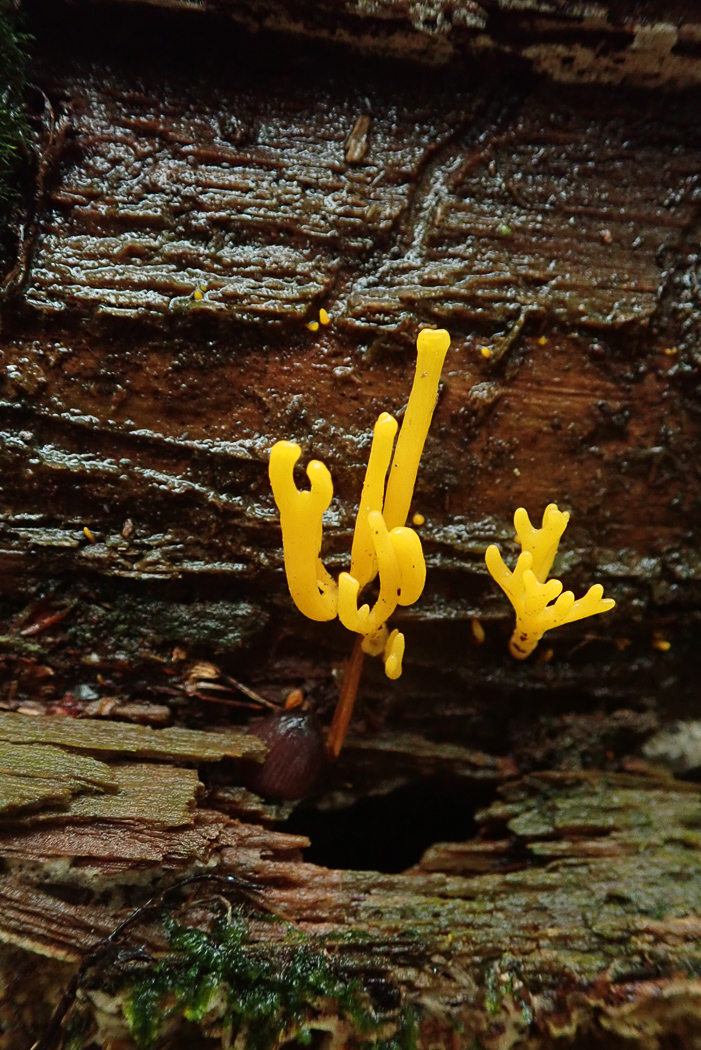 |
October 3rd Calocera viscosa (Yellow Stagshorn)
There were many examples of this species in Penn Wood growing on conifer - either stumps or fallen rotting trunks, found by Penny Cullington. Very common given the conifer host, this is a gelatinous genus and this particular species typically branches at the tips, the right hand specimen appearing very like stags' antlers. It is rubbery and tough, rooting deeply into the wood making it difficult to extricate, and can reach 8 cm in height.
|
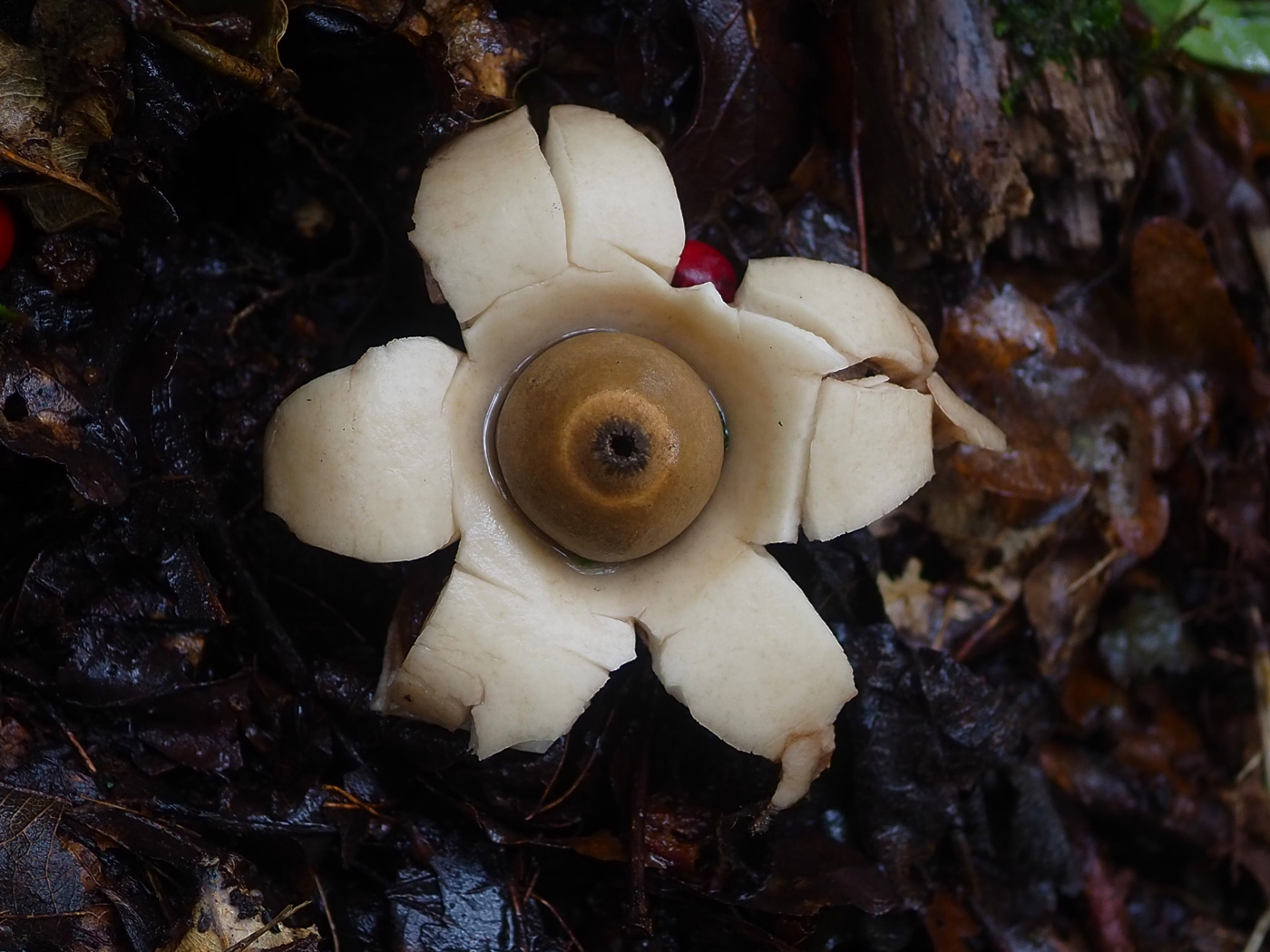 |
October 3rd Geastrum triplex (Collared Earthstar)
John Catterson found this singleton at Downley Common in woody litter. We have another rather damaged example (dated Sept 04), but it's worth comparing the two because the earlier one has a clear collar around the central part whereas today's has no typical collar at all - often the case! This does not mean it's a different species but note how the five rays are beginning to split radially - this is how the 'collar' if present is formed.
|
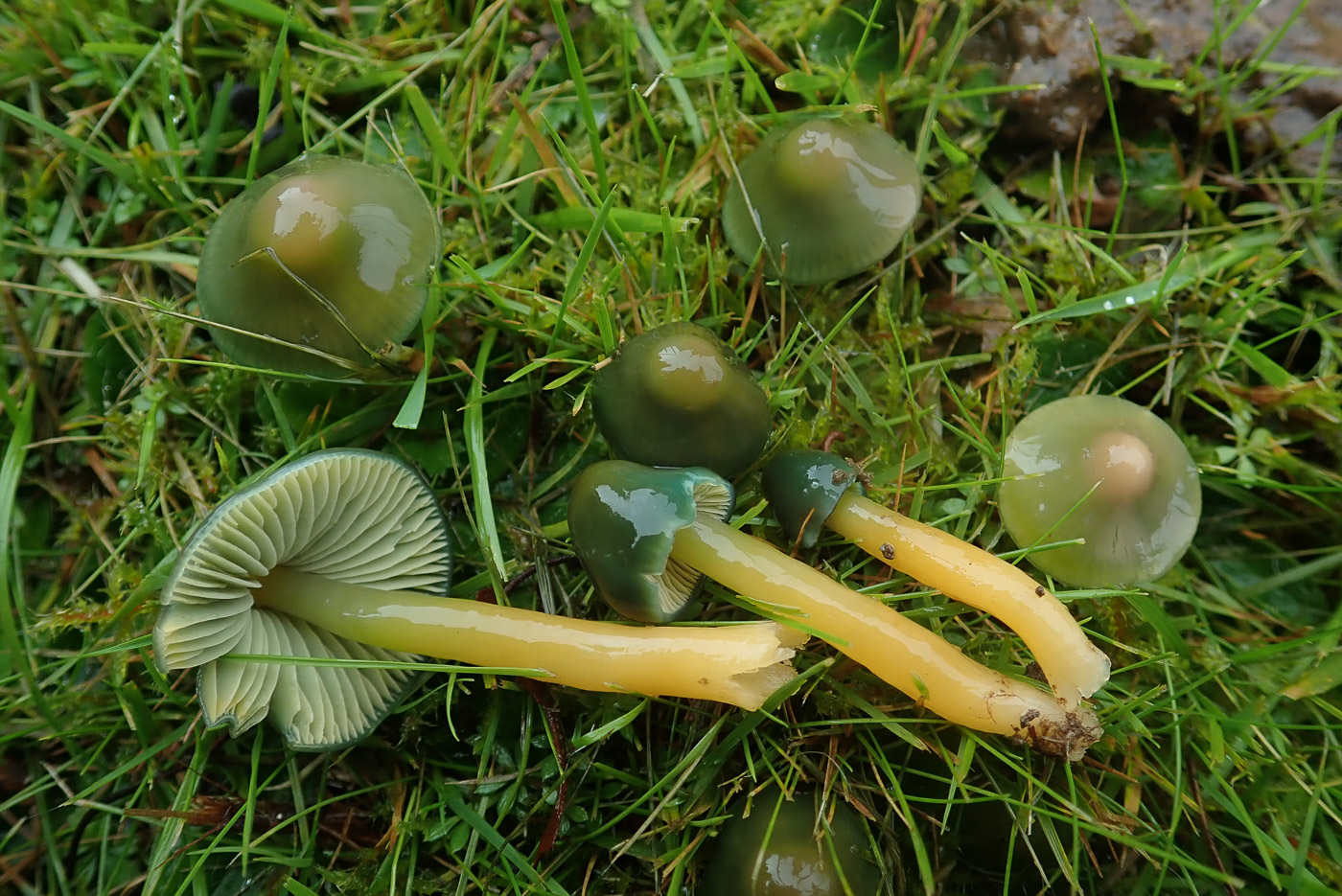 |
October 3rd Hygrocybe psittacina (now Gliophorus psittacinus) (Parrot Waxcap)
This beautiful collection was found in mown grass at Penn Street churchyard by Penny Cullington. We do have an earlier singleton (dated Sept 8) when conditions were dry, but today in the rain the slimy caps and stems were glistening! The cap colour is very variable and can have yellow or even pinkish or violet tones, but if in doubt over the species the telltale green is usually noticeable at the top of the stem (which may be yellow elsewhere as today). H. laeta (also now in genus Gliophorus) also has a slimy yellowish cap and stem and can be mistaken for today's species, but never has green at the stop of the stem.
|
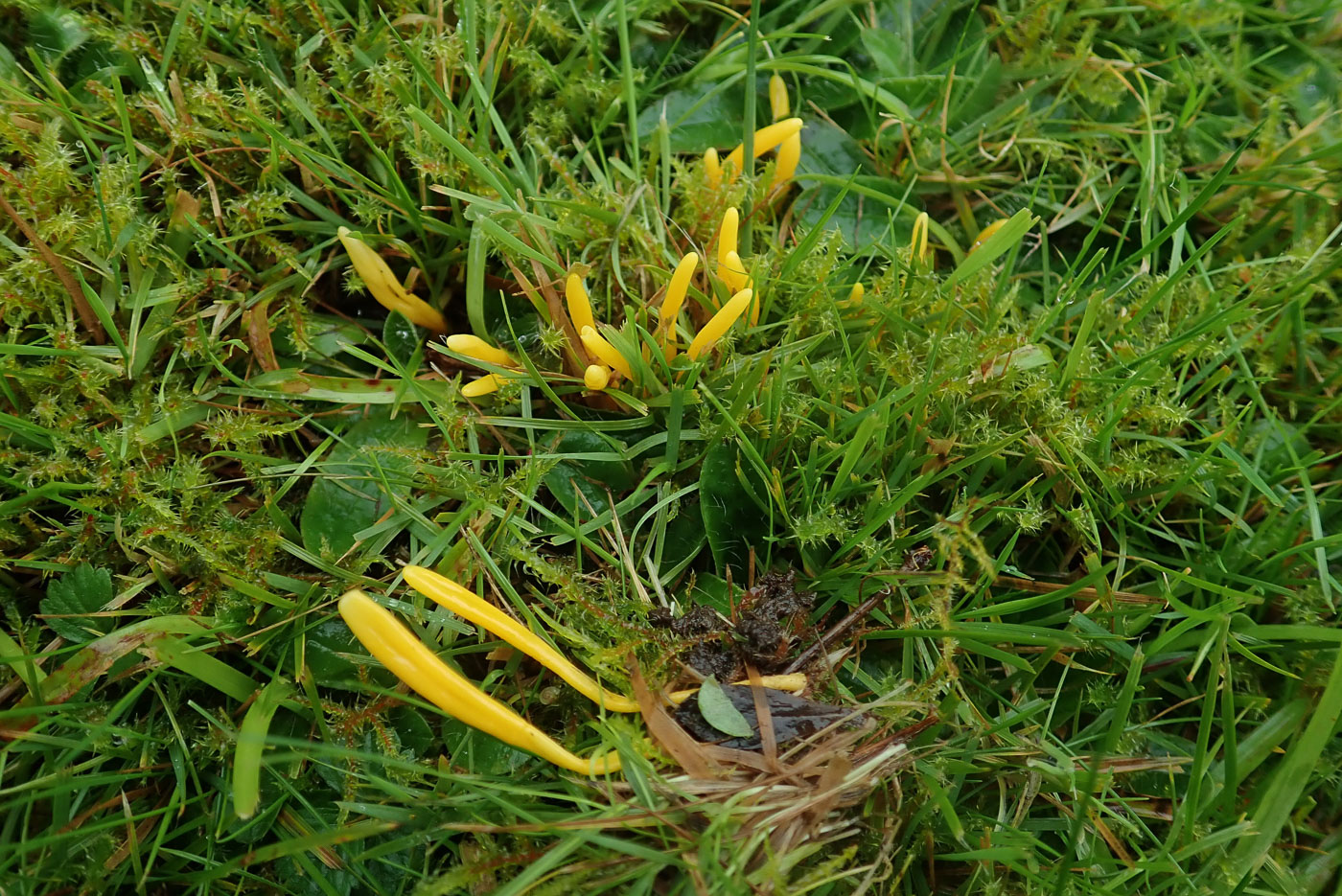 |
October 3rd Clavulinopsis helvola (Yellow Club) 
There were many of these in mown grass in the Penn Street churchyard, found by Penny Cullington. This species is one of three more or less identical Clubs (sometimes called Fairy Clubs), so species identification can only be made by checking the spores (shape and size). C. helvola, however, is by far the commonest of the three. All three are not much taller than the blades of grass they inhabit and even with this colour are easily overlooked. Note the wider often grooved upper section and narrower stem below common to all the species.
|
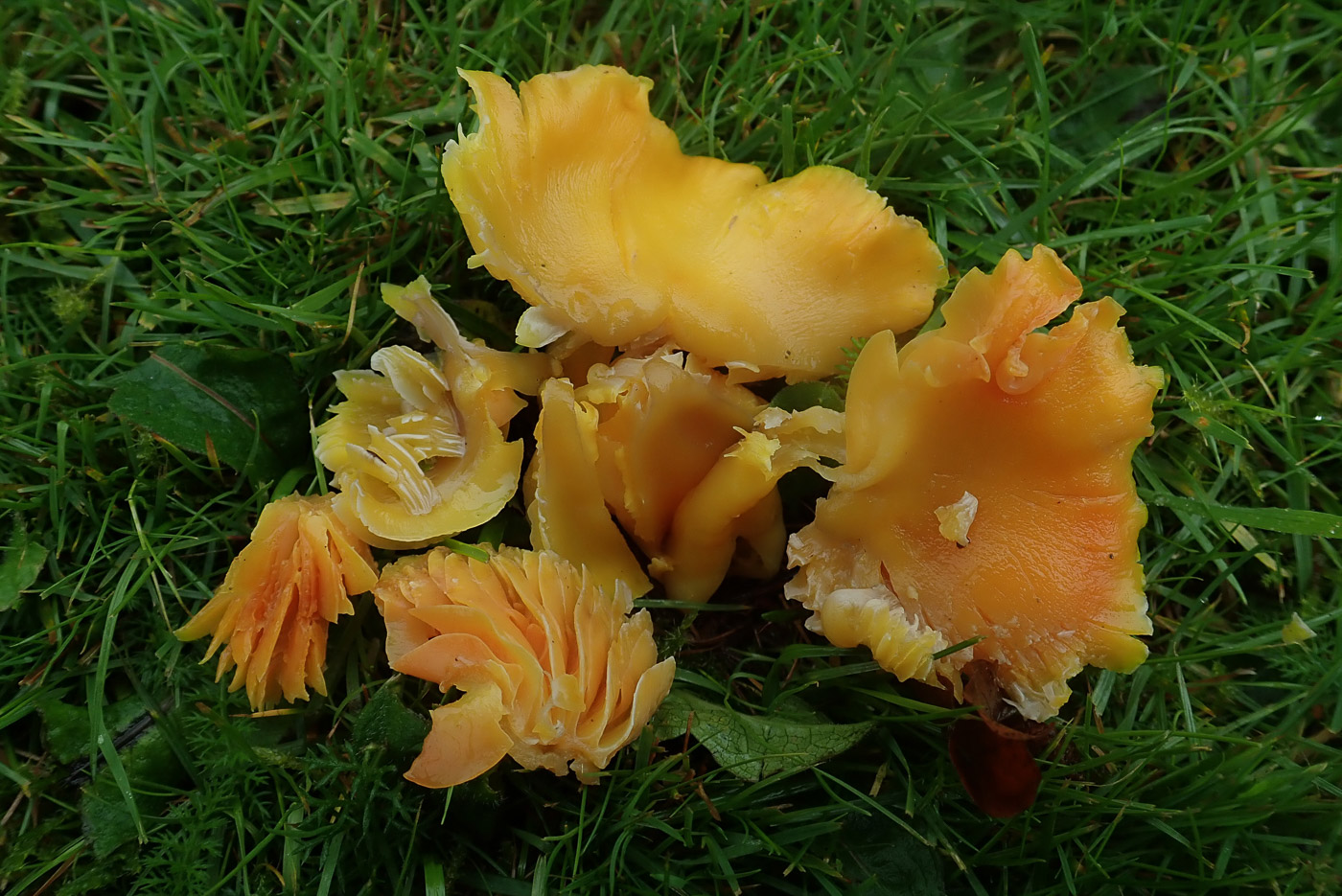
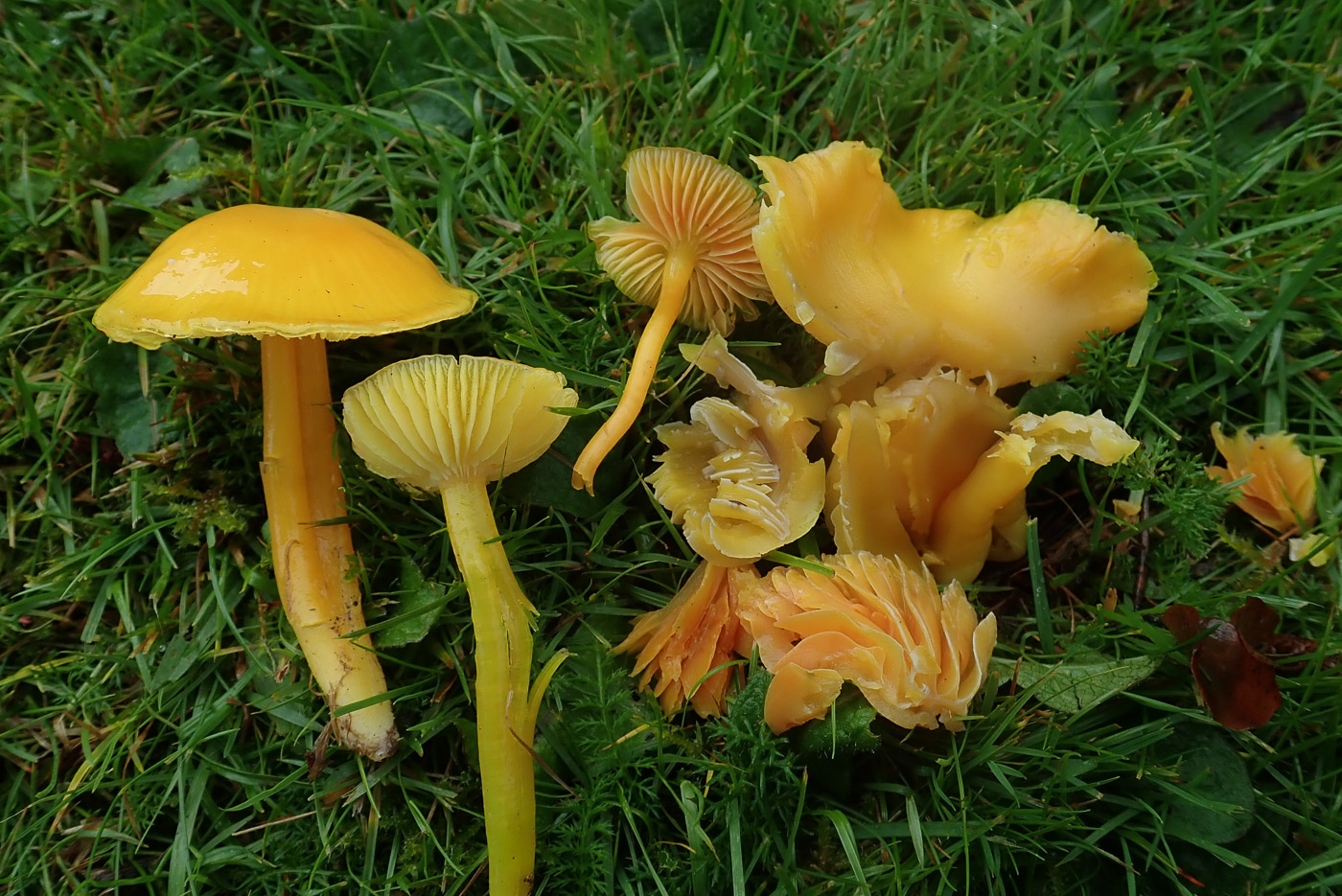 |
October 3rd Hygrocybe quieta (Oily Waxcap) 
Penny Cullington found this in mown grass in the Penn Street churchyard. Believe it or not, it was all one large but rather broken specimen! We do have another photo (dated Sept 16) though the cap colour is much more typical here, thus worth including. Another medium sized yellow Waxcap, this one has orange gills and stem (compare with the pale yellow gills of the similar H. chlorophana, same date), also a smell similar to that of Lactarius quietus - hence the Latin species name. Photo 2 contains both these two Waxcaps for comparison: Left is H. chlorophana (two specimens) and Right is H. quieta (one large and one small). (As the two have differently shaped spores, these were checked to confirm the field identification.)
|
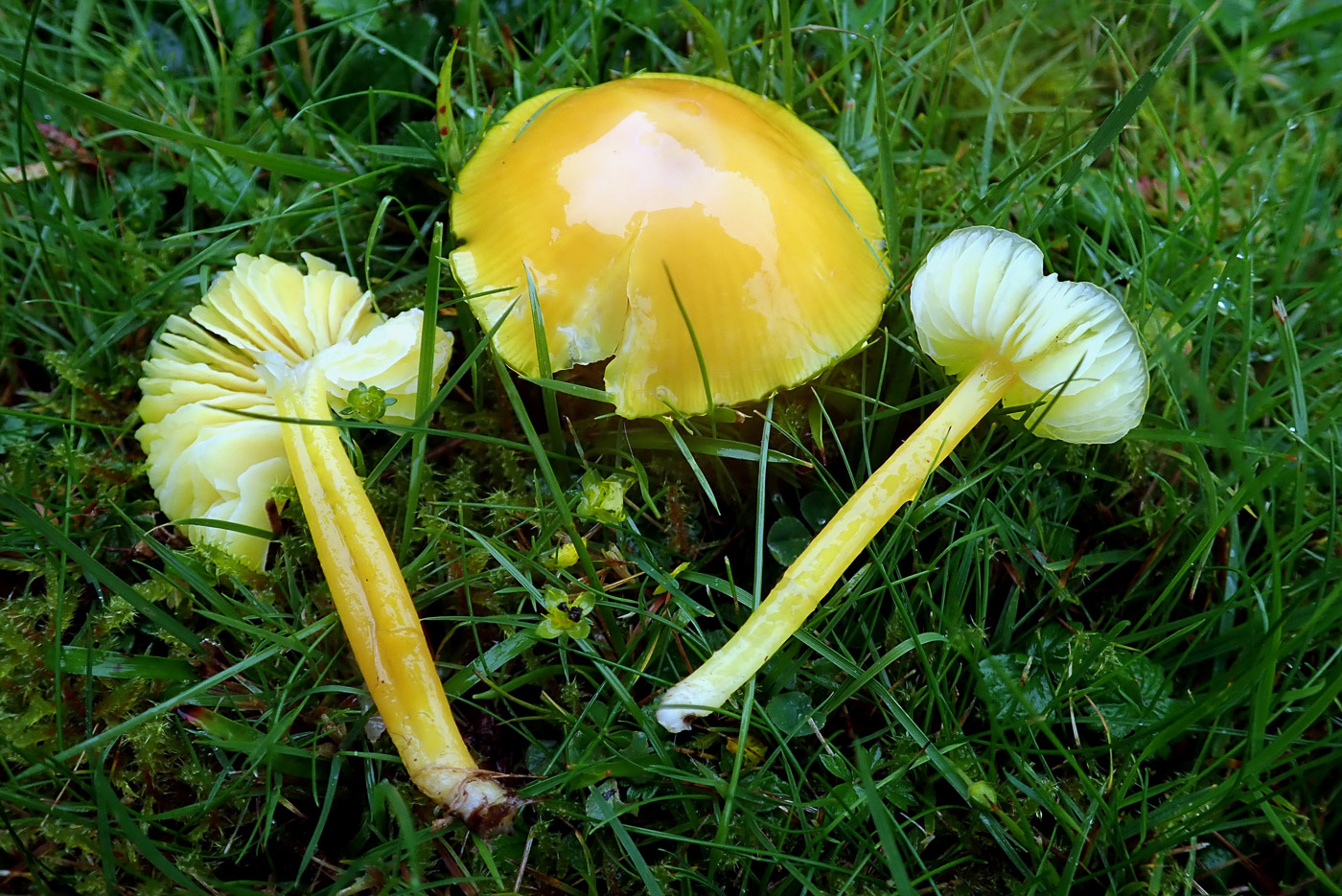 |
October 3rd Hygrocybe chlorophana (Golden Waxcap) 
This collection was in mown grass in the Penn Street churchyard, found by Penny Cullington. Waxcaps are predominantly grassland fungi, many are brightly coloured and this common species is one of quite a few which are yellow and sticky - especially after rain as today. Note the gills which are slightly paler than the cap and the typical grooved and hollow stem, both good pointers for the species. This is a medium to large Waxcap with caps up to 7 cm across and has no noticeable smell.
|
October 2nd 2020
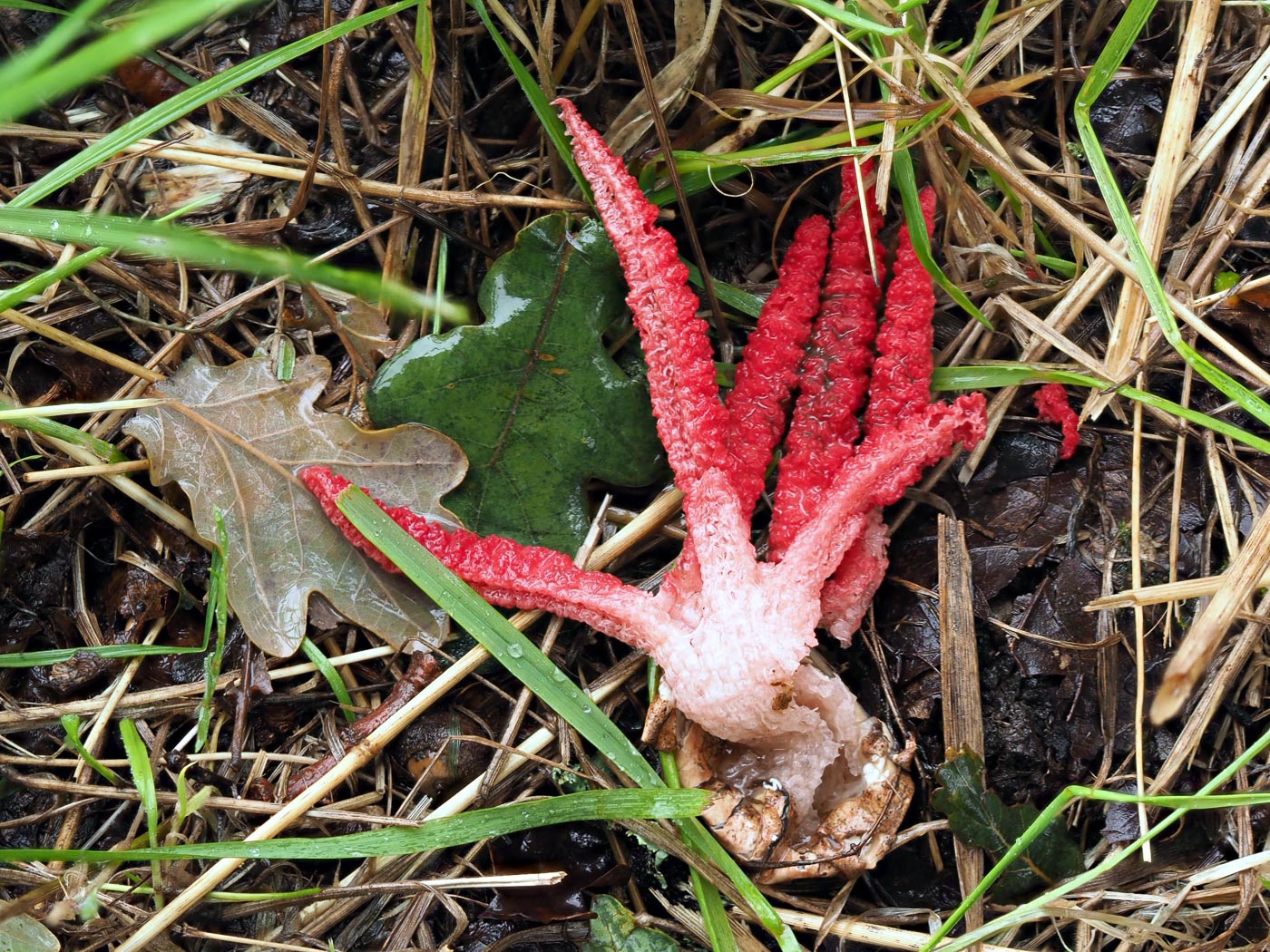
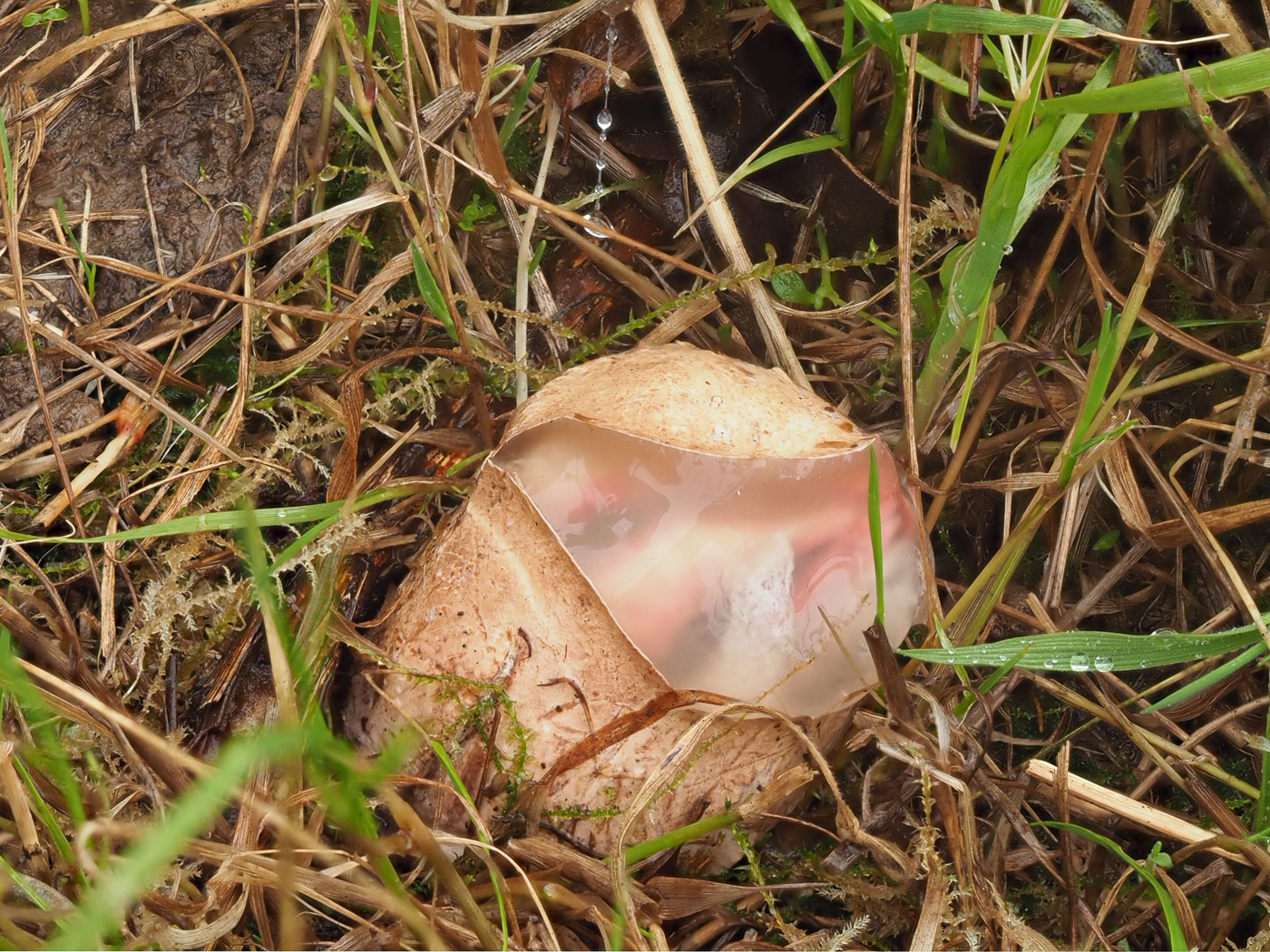
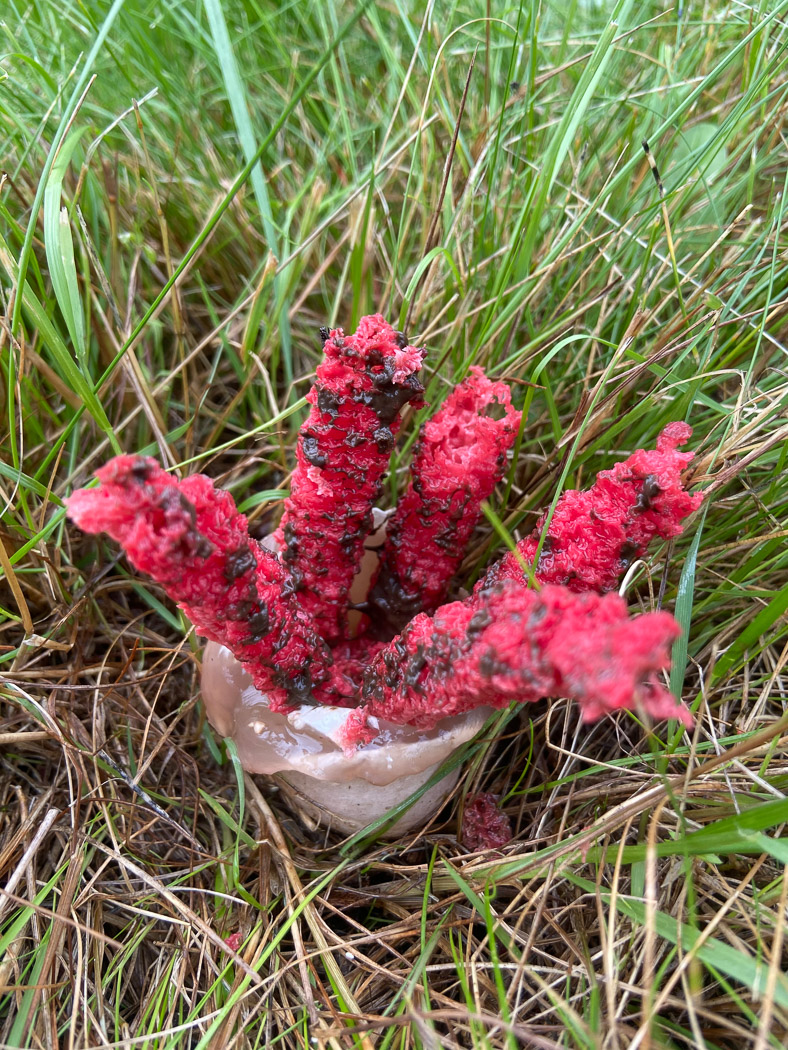
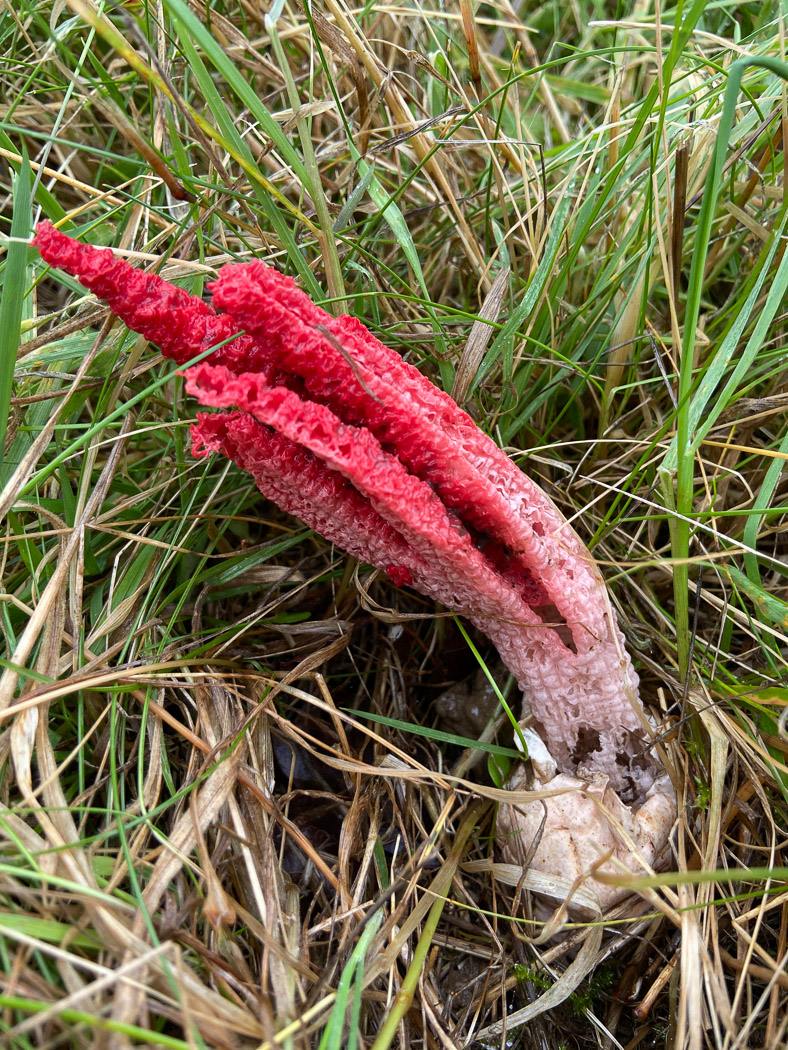 |
October 2nd Clathrus archeri (Devils Fingers)
This remarkable and unique fungus was new to the county last year in the same Naphill location as today's find made by Claire Williams. Rare in Britain, it is clearly related to the Stinkhorns, emerging from a similar gelatinous egg which can be up to 3 cm in diameter and having a pervasive unpleasant smell which attracts insects. Identification is not difficult! If you're interested, find out more at www.first-nature.com/fungi/clathrus-archeri.php Sarah Ebdon sent in two more photos showing different stages of development.
|
October 1st 2020
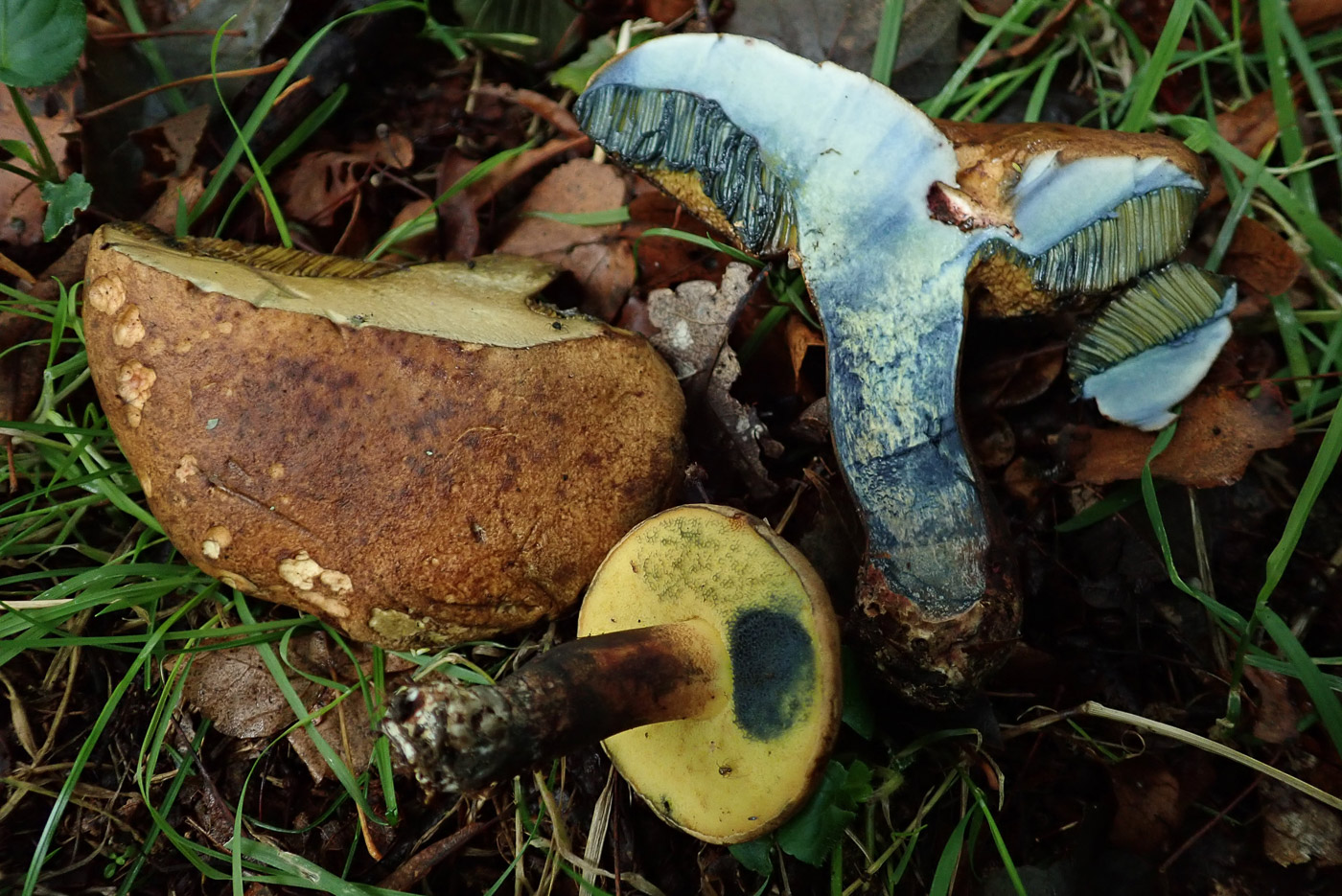
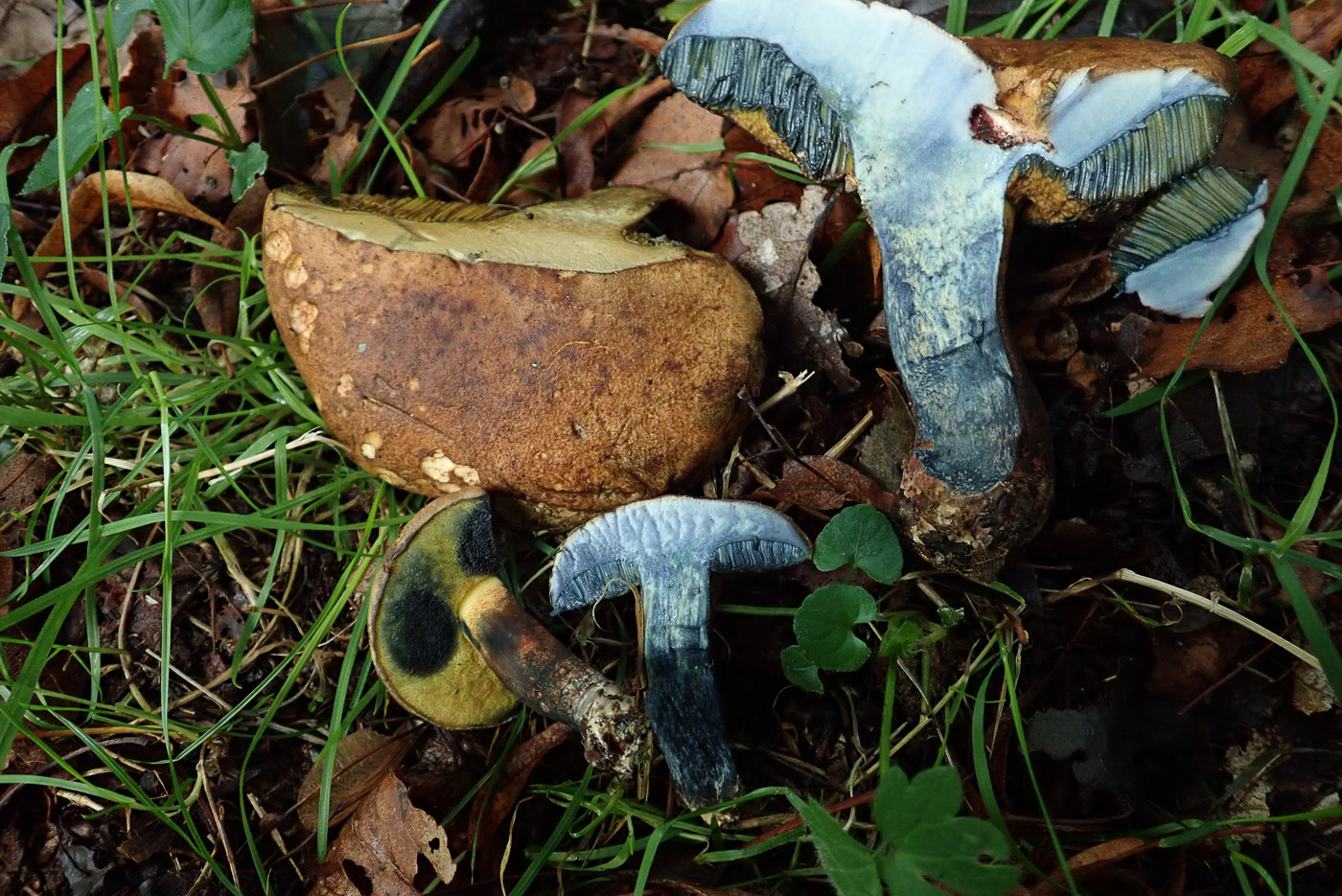 |
October 1st Cyanoboletus pulverulentus (Inkstain Bolete)
We do have this species already (dated Sept 22), but Penny Cullington found this fresher example under Oak and Lime at Turville Heath which is worth including separately. See notes under Sept 22, but suffice it to say that the striking blue staining took no more than two or three seconds in the smaller young specimen, leaving one in no doubt as to the identification. Note the yellow pores, not red or orange as in other strongly blueing boletes (which incidentally never go as deeply intense blue as this species).
|
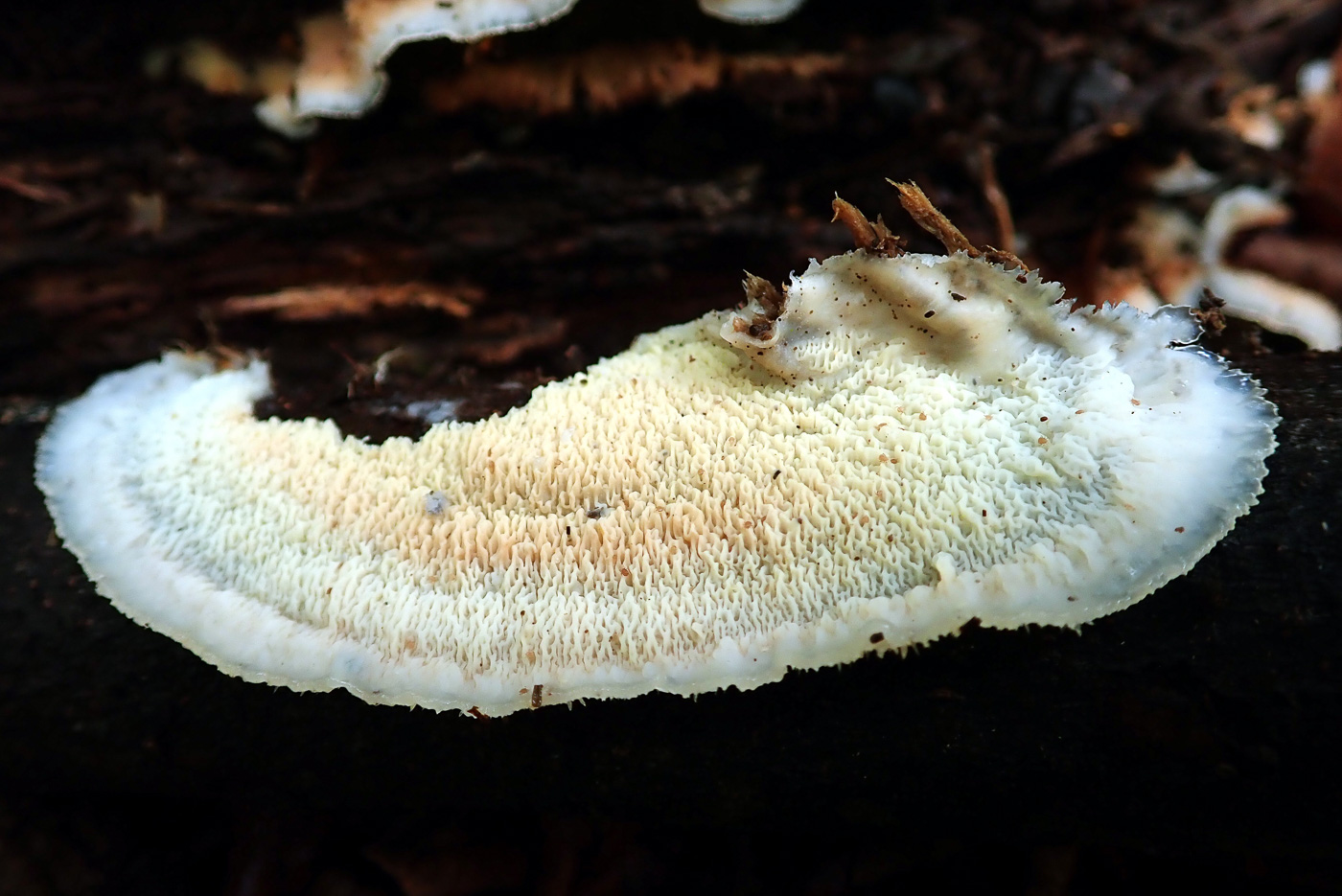
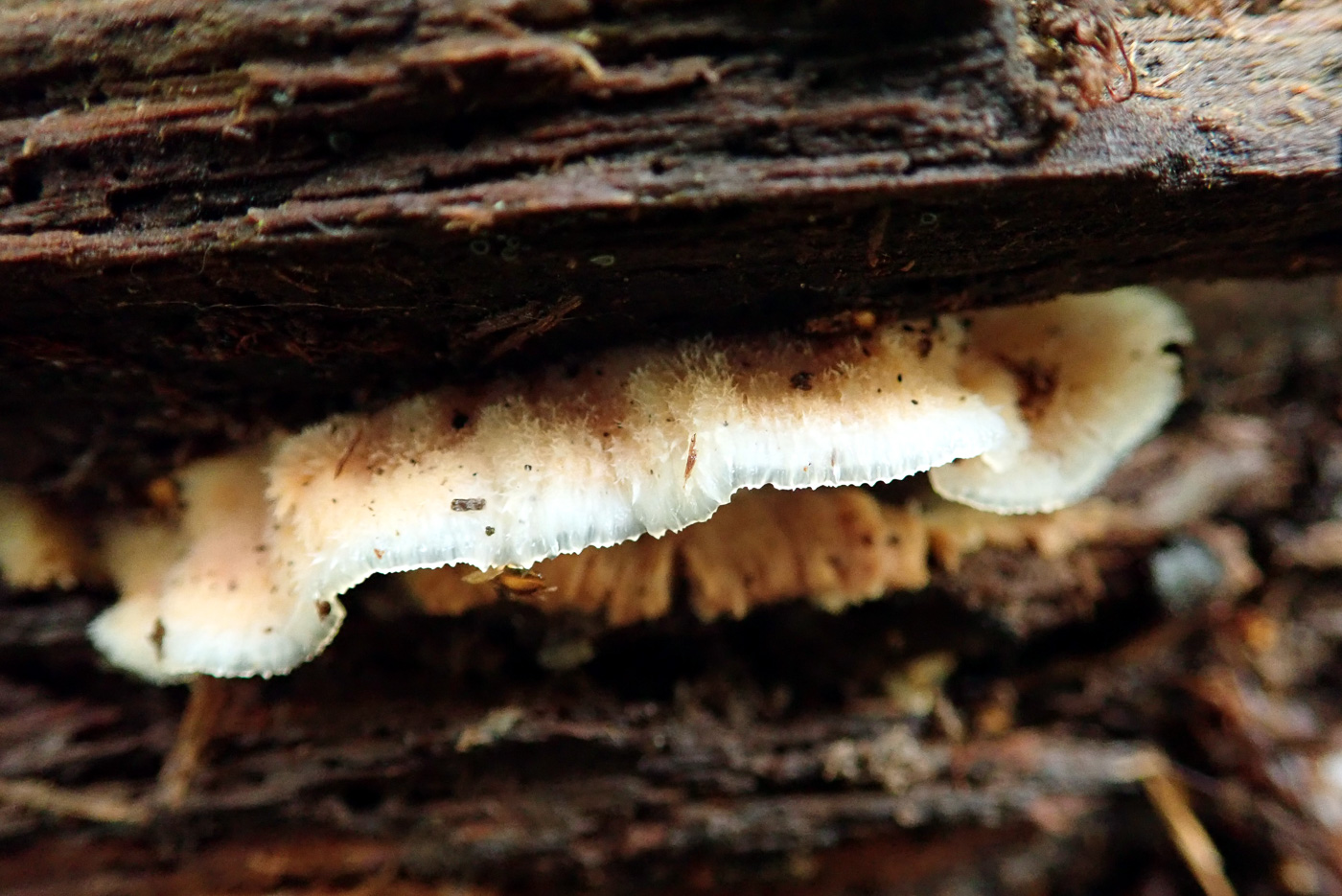 |
October 1st Phlebia tremellosa (Jelly Rot)
Penny Cullington found this species growing resupinate (flat) on rotting bare deciduous wood at Turville Heath. As the common name suggests, this is not a hard bracket (in fact hardly a bracket at all) but has soft flesh with a gelatinous feel to it. The pinkish cream rather erratic poroid part is often not always on the underside (as here on a stick in photo 1) but occasionally it starts to form a 'semi'bracket (seen in photo 2). Note the crenulate (frilly) margin which is characteristic.
|
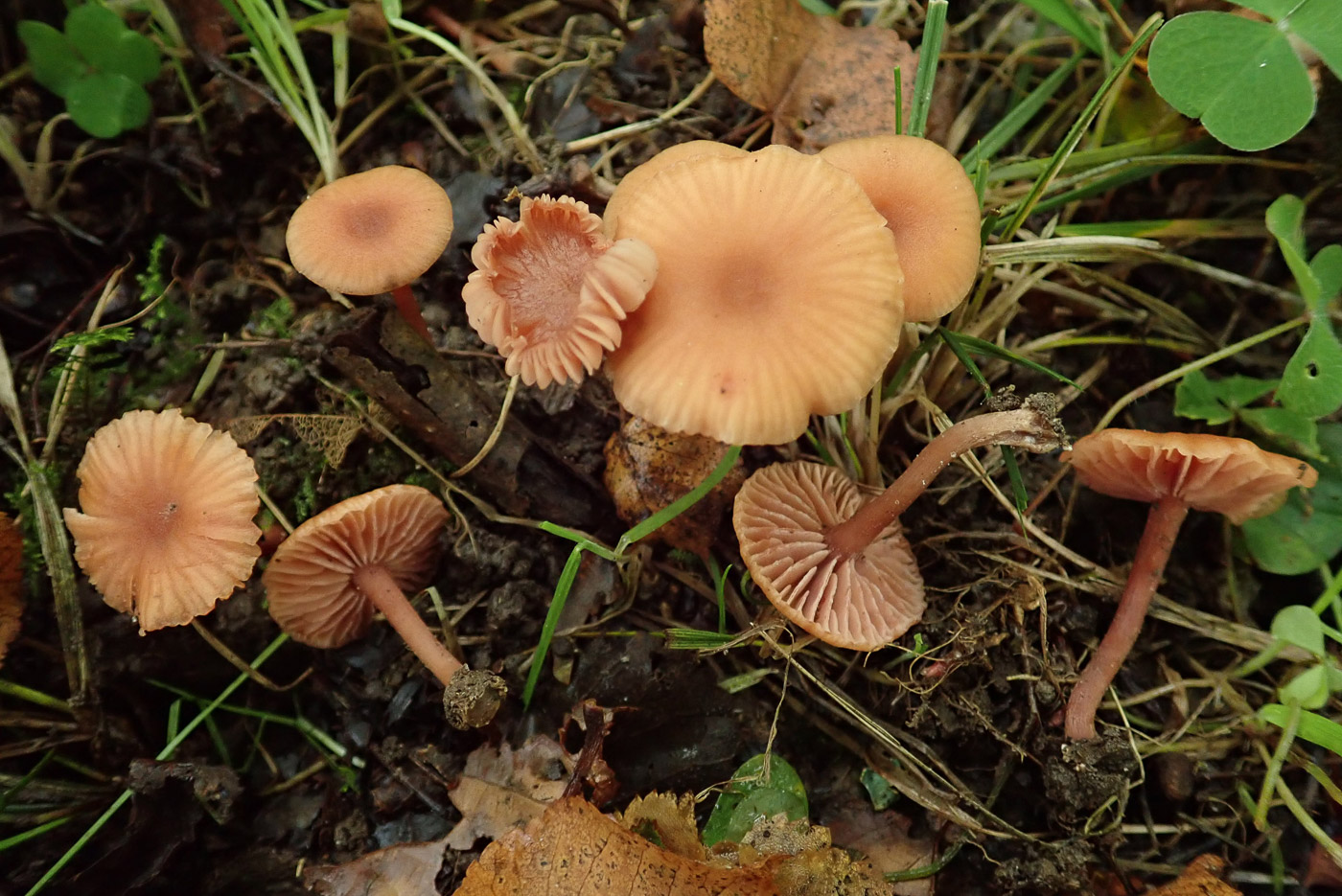
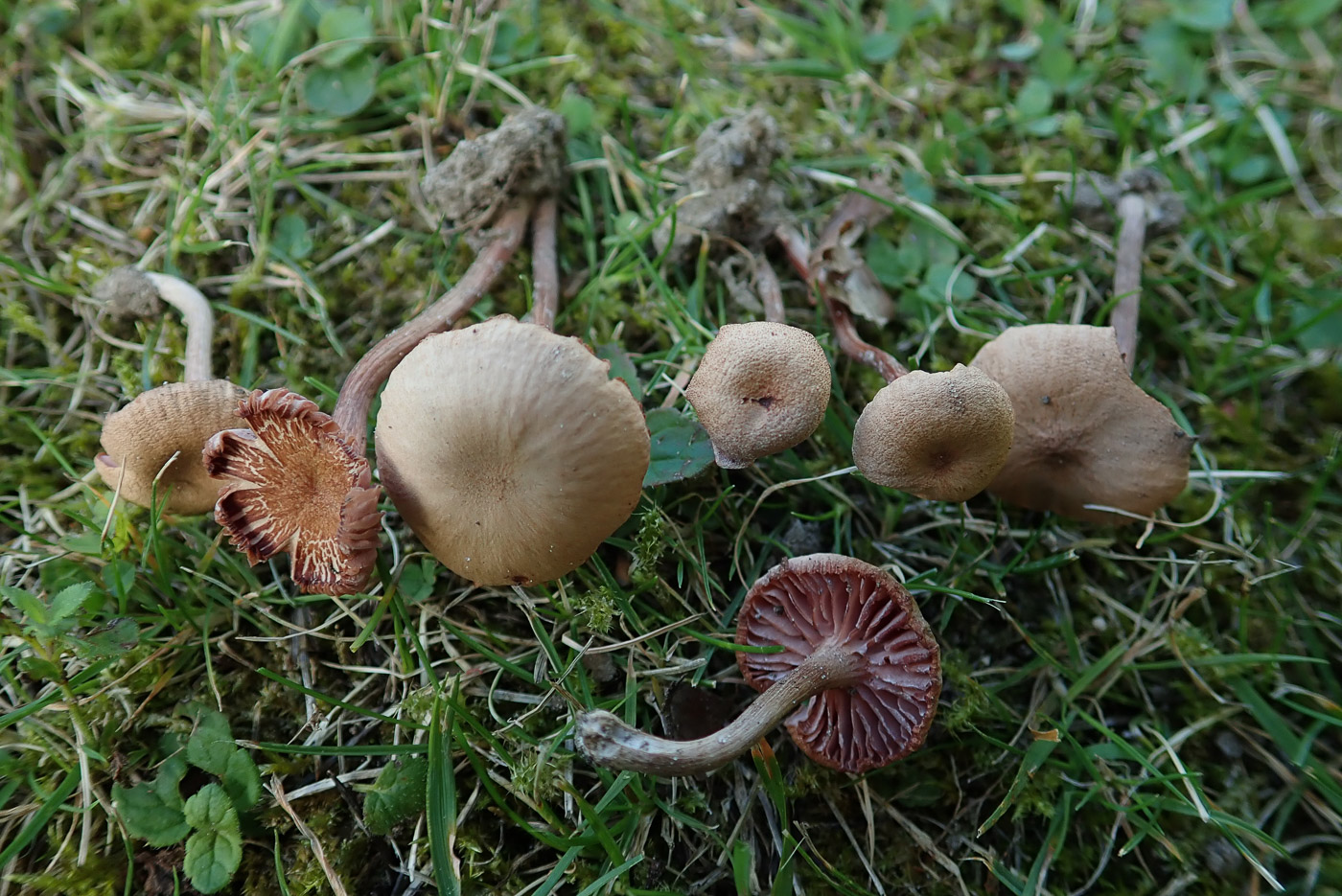 |
October 1st Laccaria laccata (Deceiver)
This very common species of woodland litter has been surprisingly scarce so far this season, only just starting to appear now. Penny Cullington found this collection under Lime at Turville Heath. Why Deceiver? Well, when fresh and moist as in today's collection, the caps are a bright rusty orange brown with matching stems and pinkish widely spaced gills. But this is a strongly hygrophanous species (i.e. the caps fade remarkably as it dries out), consequently, when faded and pale beige to almost white, they deceive because from above they look so different. Penny kept this collection and placed them in the sun for a couple of hours, then took the second photo to demonstrate just this. However, note how the gills become even more clearly pink when drying. So if confused in the field, by turning over a fruit body and seeing those widely spaced pink gills, hopefully you will not be deceived for long!
|
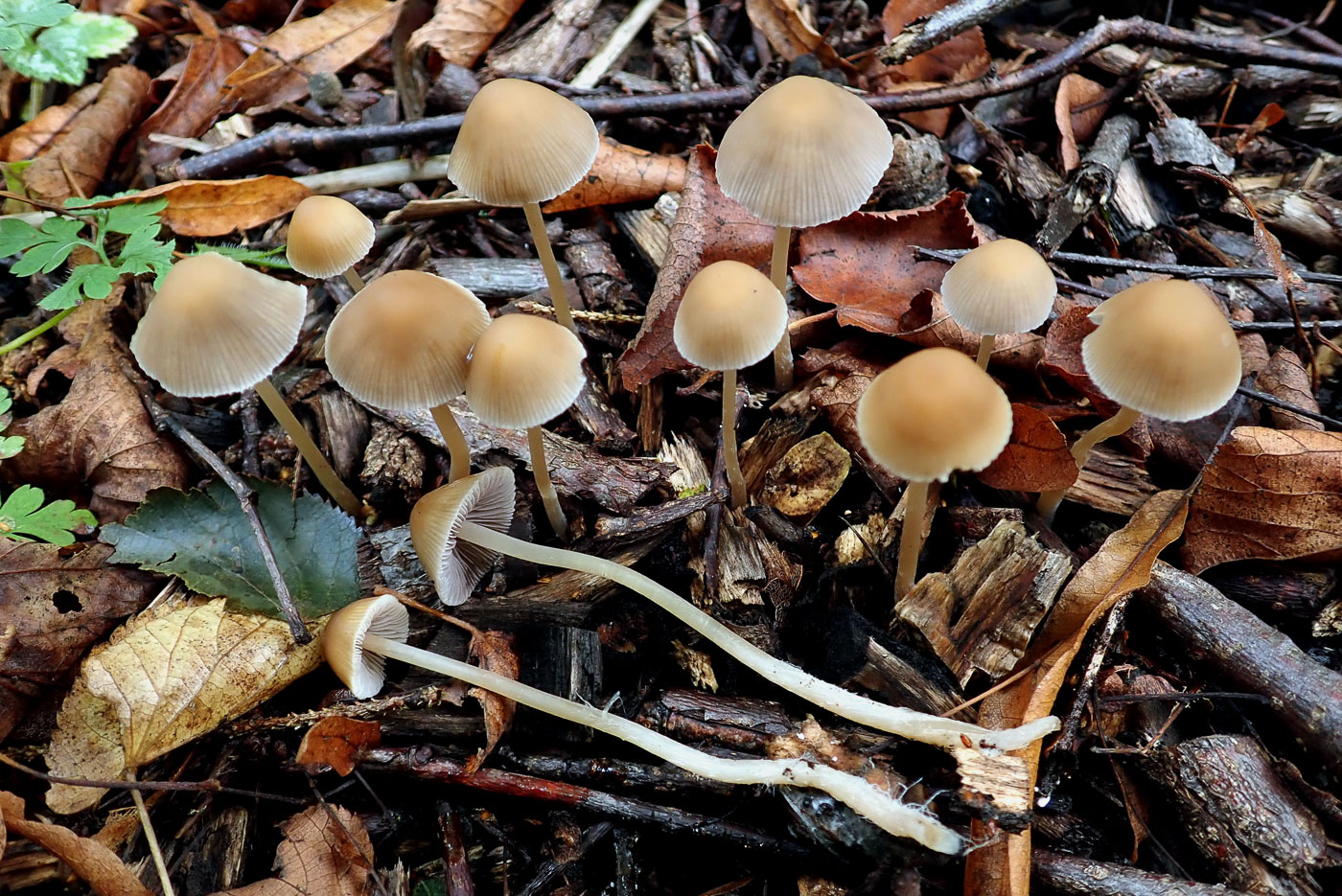 |
October 1st Psathyrella corrugis (Red Edge Brittlestem) 
This cluster was found by Penny Cullington growing in rotting woodchip at Turville Heath. A large and tricky genus, very few Brittlestems can be identified in the field. They have white fragile stems and caps usually some shade of brown but fade in light or with age. Caps can be smooth - as here - or scaly, gills start out pale beige but gradually darken as the blackish spores develop (note the paler gills of the younger fruitbody in the foreground). This species (and some others also) can have gills with a distinct red edge, hence the common name, but as often as not this feature is missing! Thus recourse to a scope is essential.
|
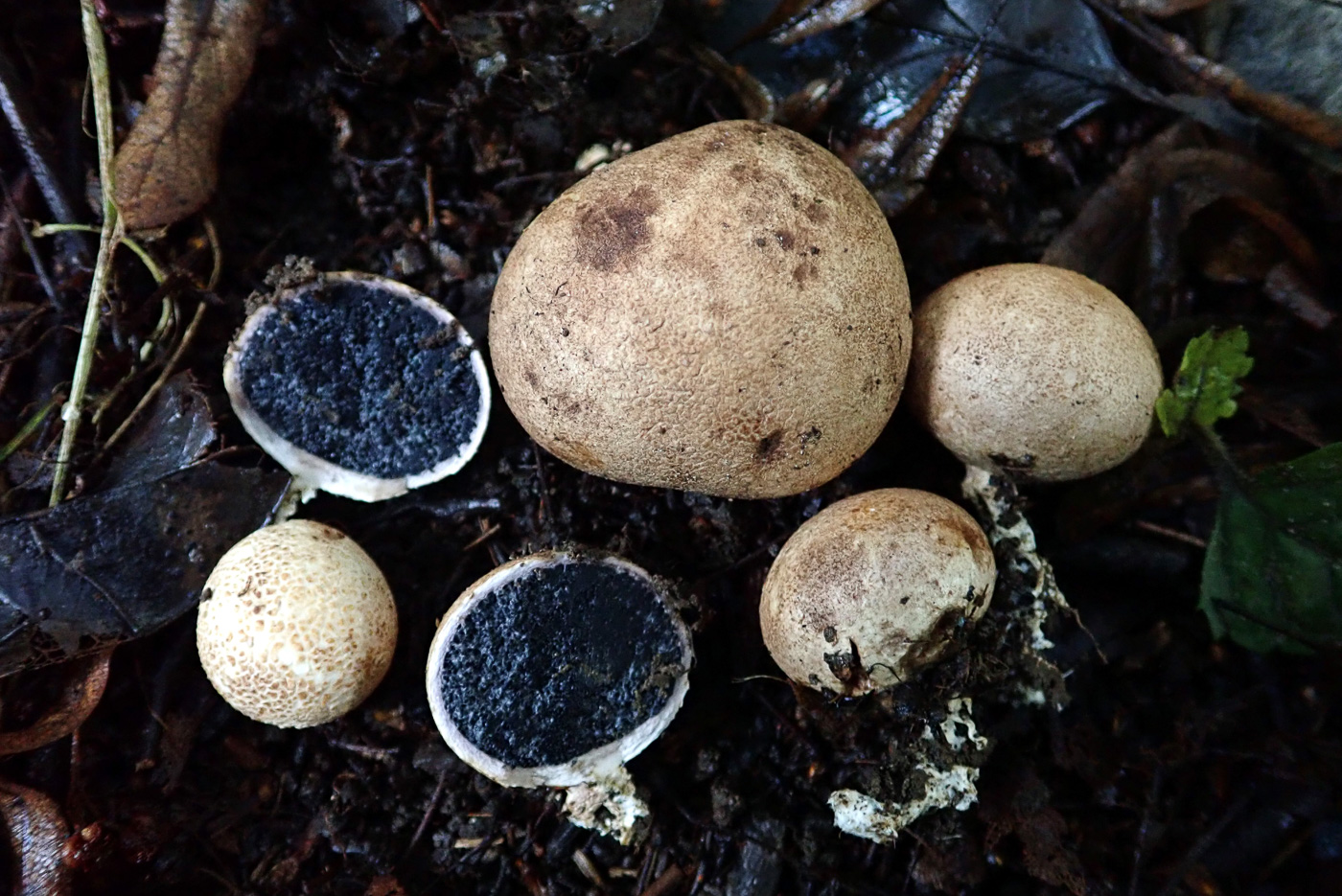 |
October 1st Scleroderma cepa (Onion Earthball)
This quite unusual Earthball was found under Lime at Turville Heath by Penny Cullington. The species is less scaly than our three common species - S. citrinum (see Sept 20), S. areolatum and S. verrucosum (see Sept 19) - having a pale slightly roughened surface, and prefers sandy soils usually under Oak (though not in this case). Note the typical thick skin and dark undeveloped spore mass within when cut in half - differing from Puffballs with which this genus is sometimes confused
|
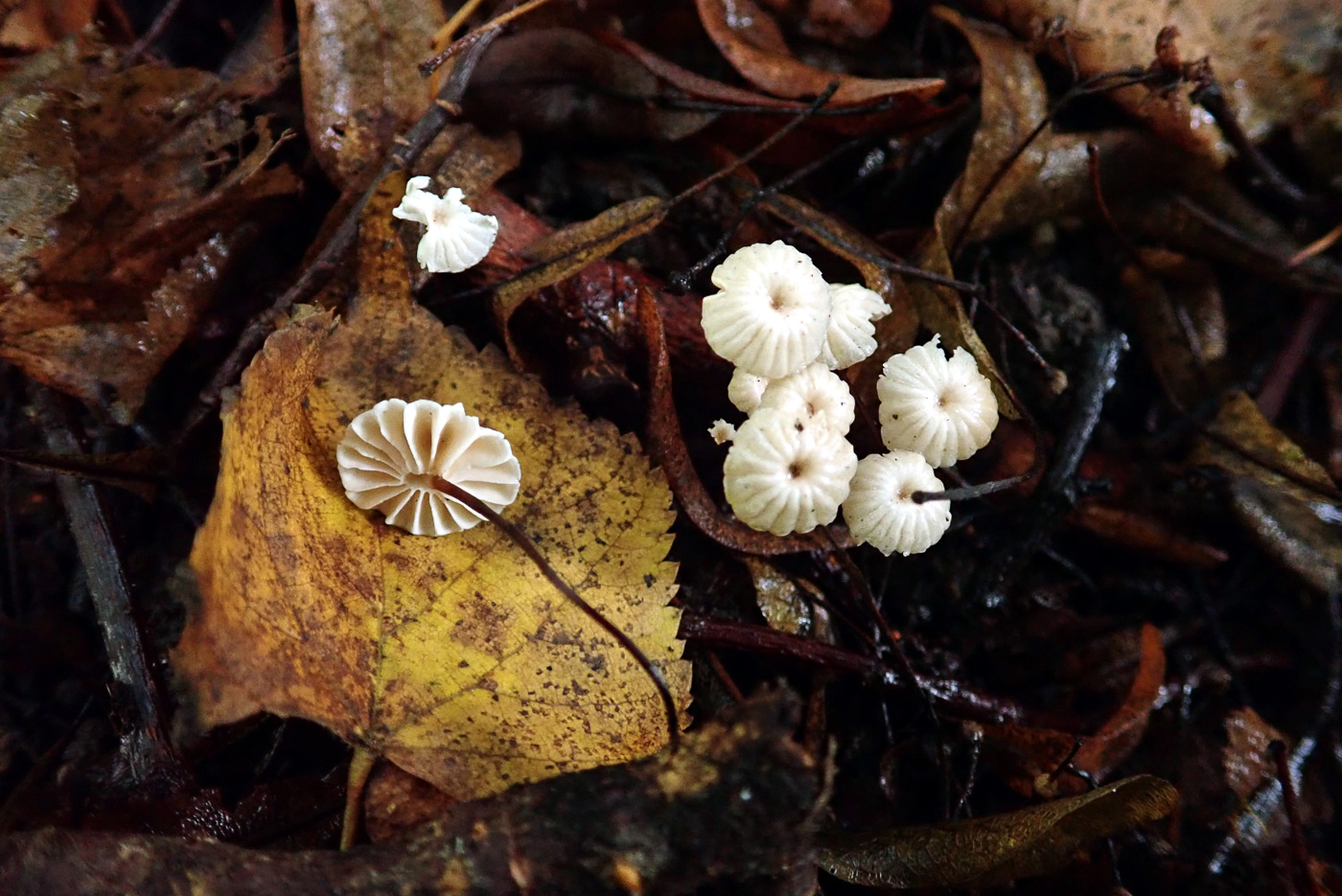
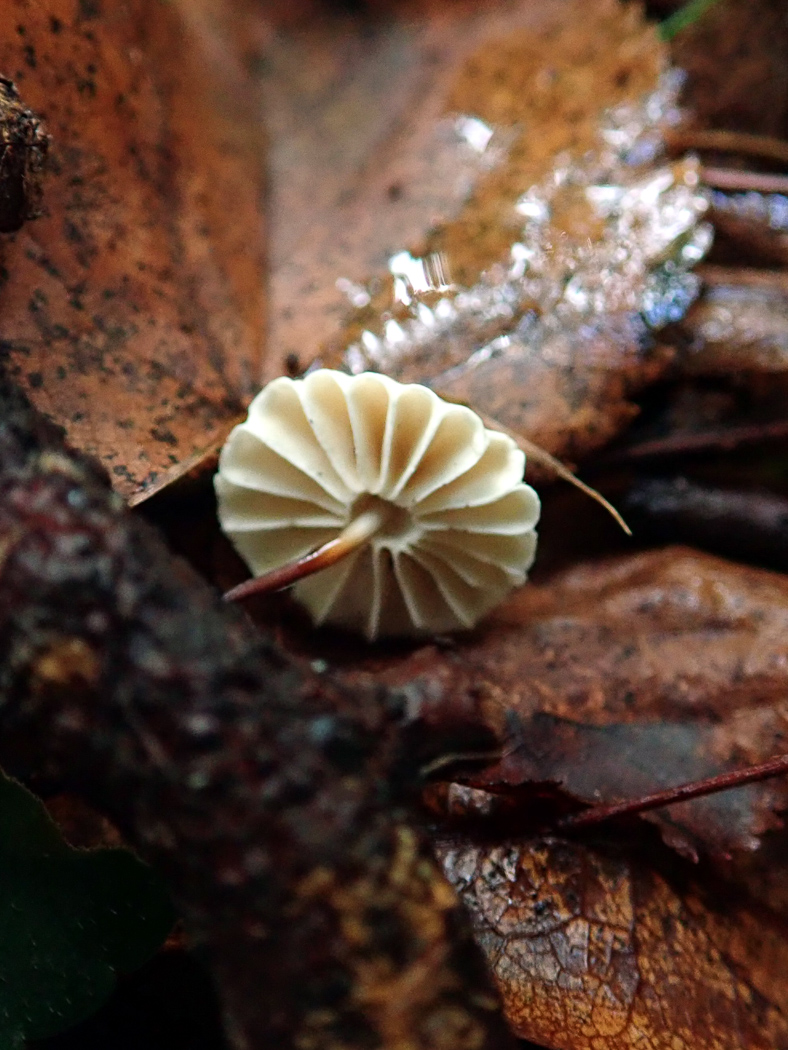 |
October 1st Marasmius rotula (Collared Parachute)
These common tiny white mushrooms were growing on woody debris under Lime at Turville Heath, found by Penny Cullington. Caps can get to not much more than 1cm across and have a sunken dark centre with distinct radial fluting. Turn one over to reveal the cog-wheel-like collar around the stem, a feature found in only this and one other species (M. bulliardii, much smaller and found exclusively on rotting Beech leaves, not woody debris). Note also the typical stem of the genus: pale at the very top then reddish and eventually black, also in this case extremely thin and wiry.
|
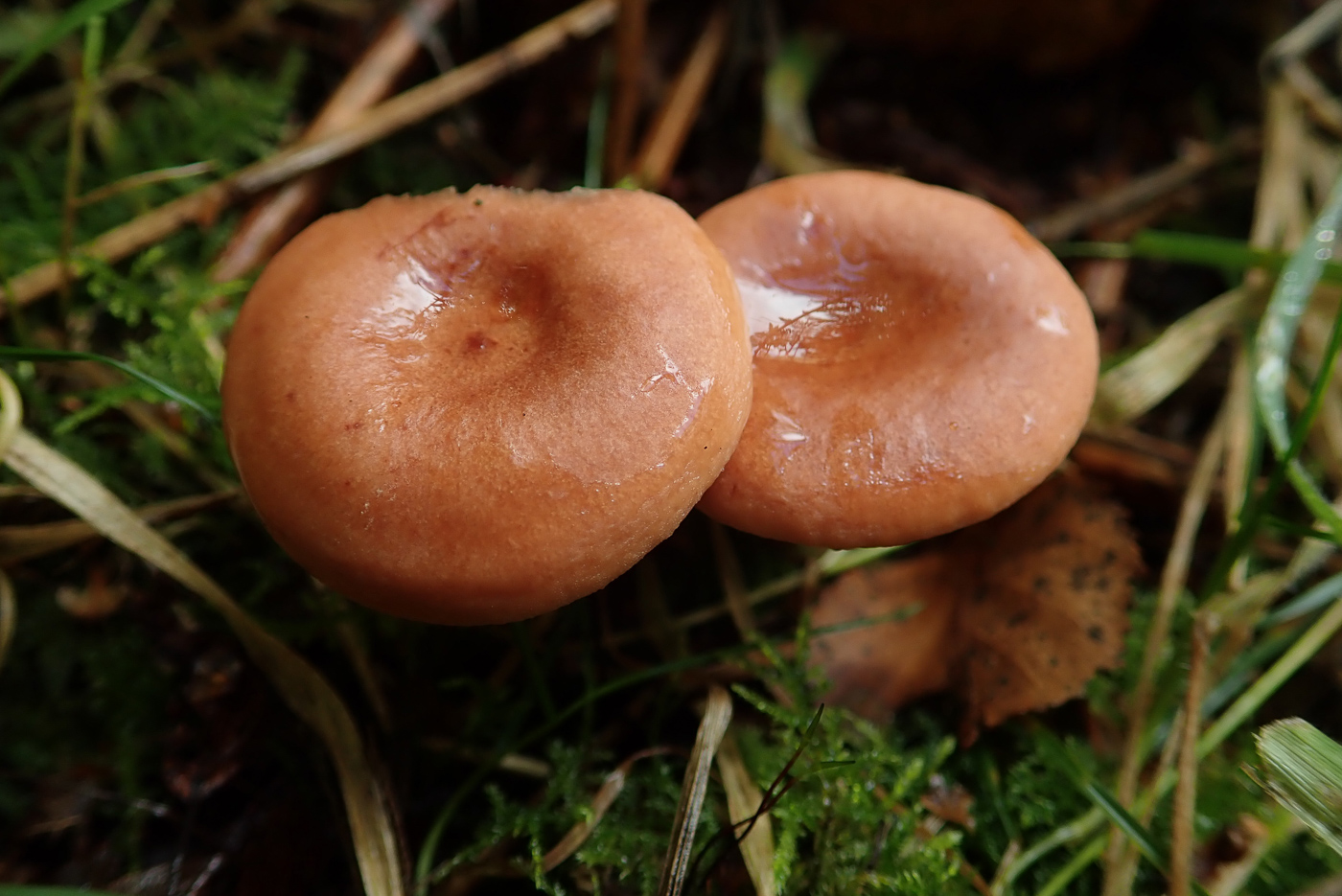
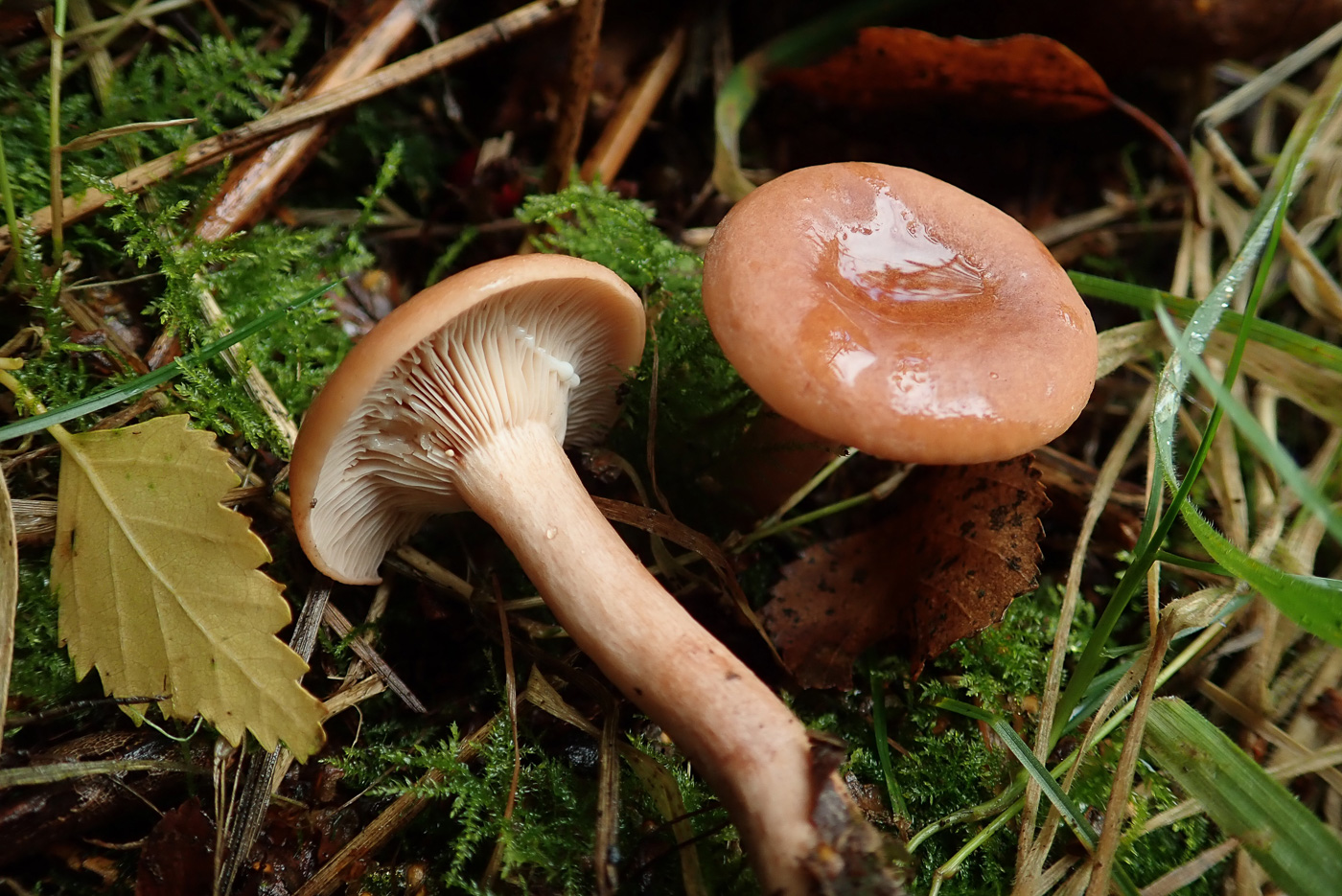 |
October 1st Lactarius subdulcis (Mild Milkcap)
Penny Cullington came across these two specimens growing under mixed deciduous trees at Turville Heath. The species is one of two, both very common, which look extremely similar, the second being L. tabidus (Birch Milkcap). Tree association is helpful but not entirely secure because despite its name the Birch Milkcap can occur under other trees in mixed woodland. Furthermore today's species occurs mainly under Beech but can also occur under other trees. Today there was no Beech present but plenty of Birch so testing the the milk by placing a drop on a white hankie (preferably cotton, not paper!) was essential. If you have L. tabidus the drop turns bright yellow in under 30 seconds. If you have L. subdulcis (as here) there is no change. (Incidentally, yellow but only slowly, in a minute or more = L. lacunarum!) A further difference - useful if it's dry and no milk is forthcoming - L. tabidus smells faint, slightly fruity but L. subdulcis smells oily, of rubber as in L. quietus.
|
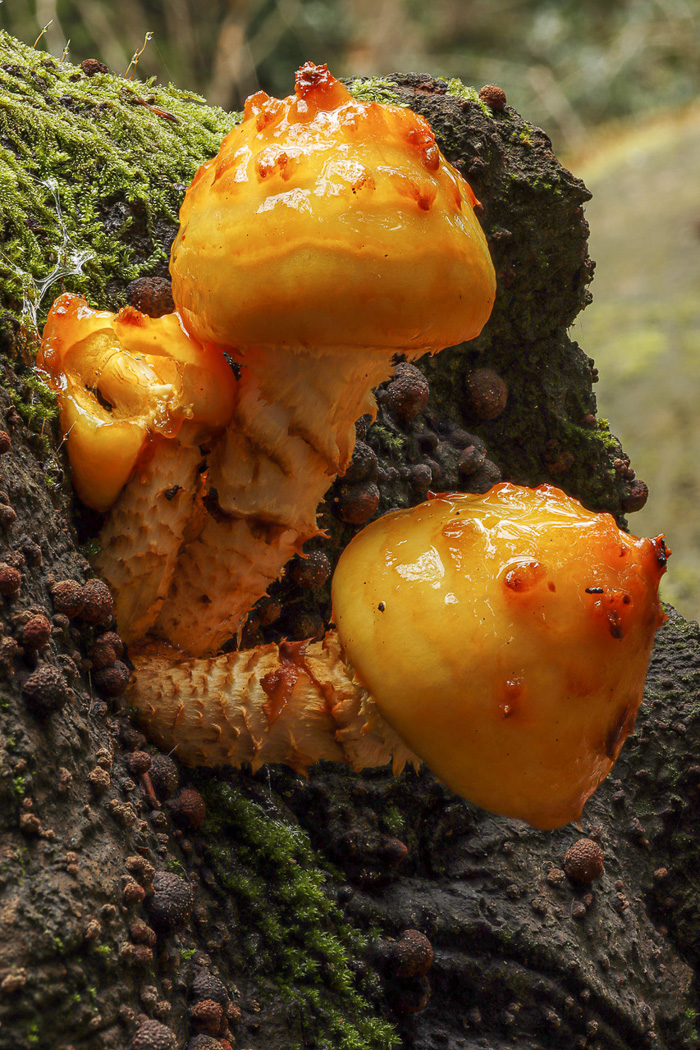
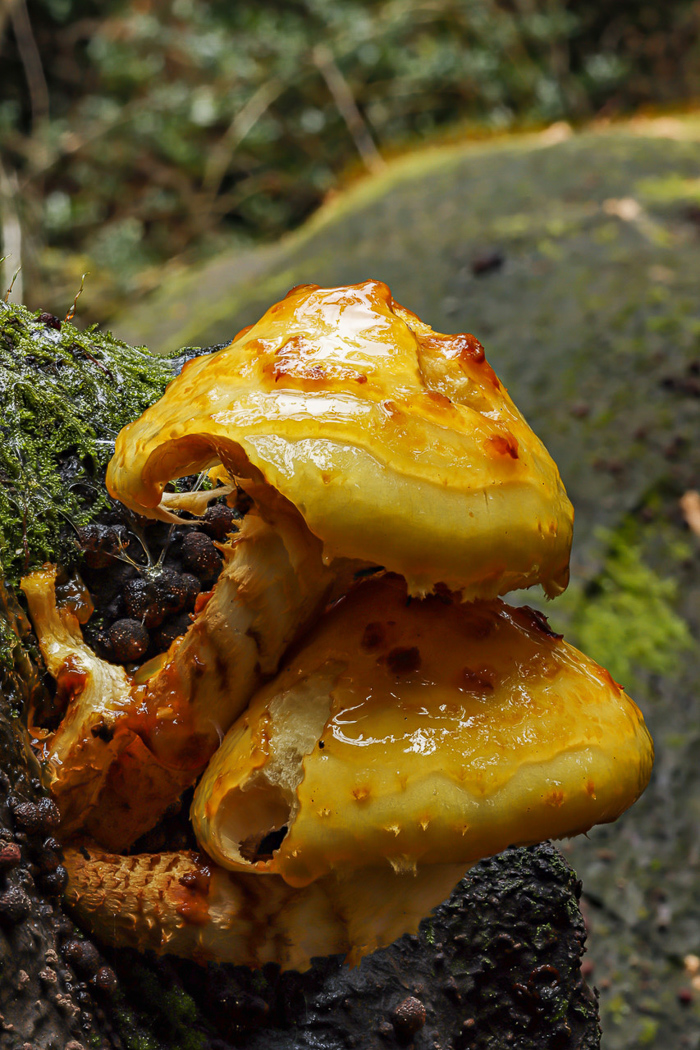 |
October 1st Pholiota adiposa (Golden Scalycap)
Paul Goby first noticed this brightly coloured fungus just emerging on a Beech log in Naphill Common two days earlier (photo one) and returned today to see how much further developed it was (photo two).There are several very similar species of Scalycap which are difficult to separate without checking their spore size (not done here so the determination is not 100%). The recent rain makes it easier to name because the thick layer of slime on the cap is typical of this species which has, however, a dry scaly stem. It is occasional and favours Beech though is far less common on this host than P. squarrosa (Shaggy Scalycap) which has a dry cap and stem. Both can grow in large clusters and are usually at the base of standing trunks.
|
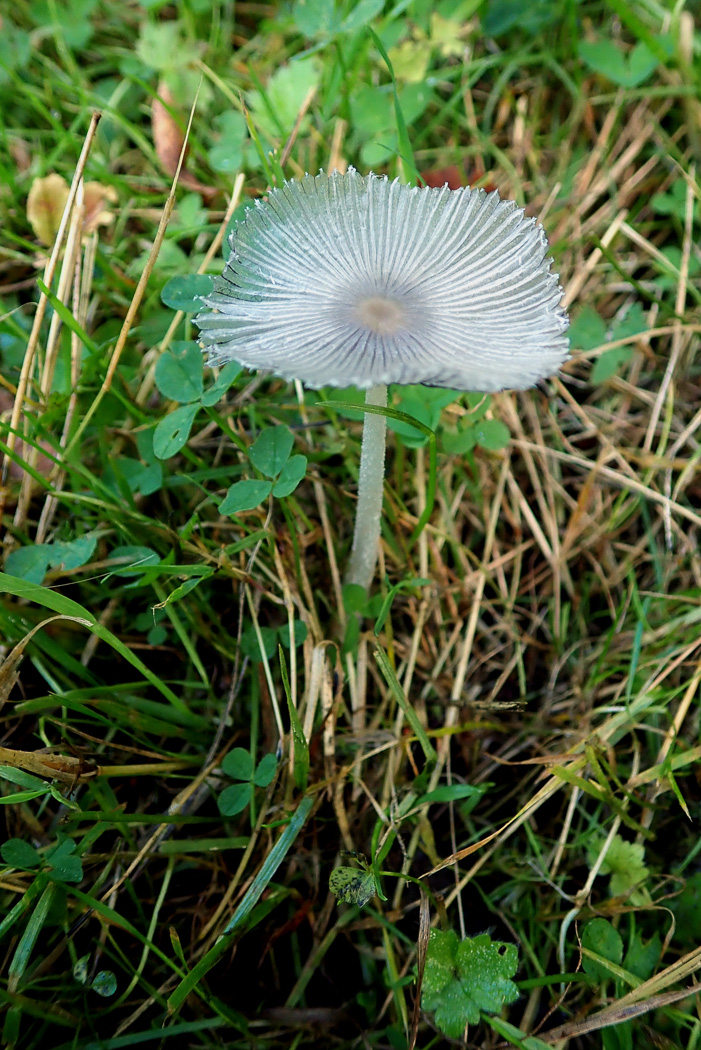
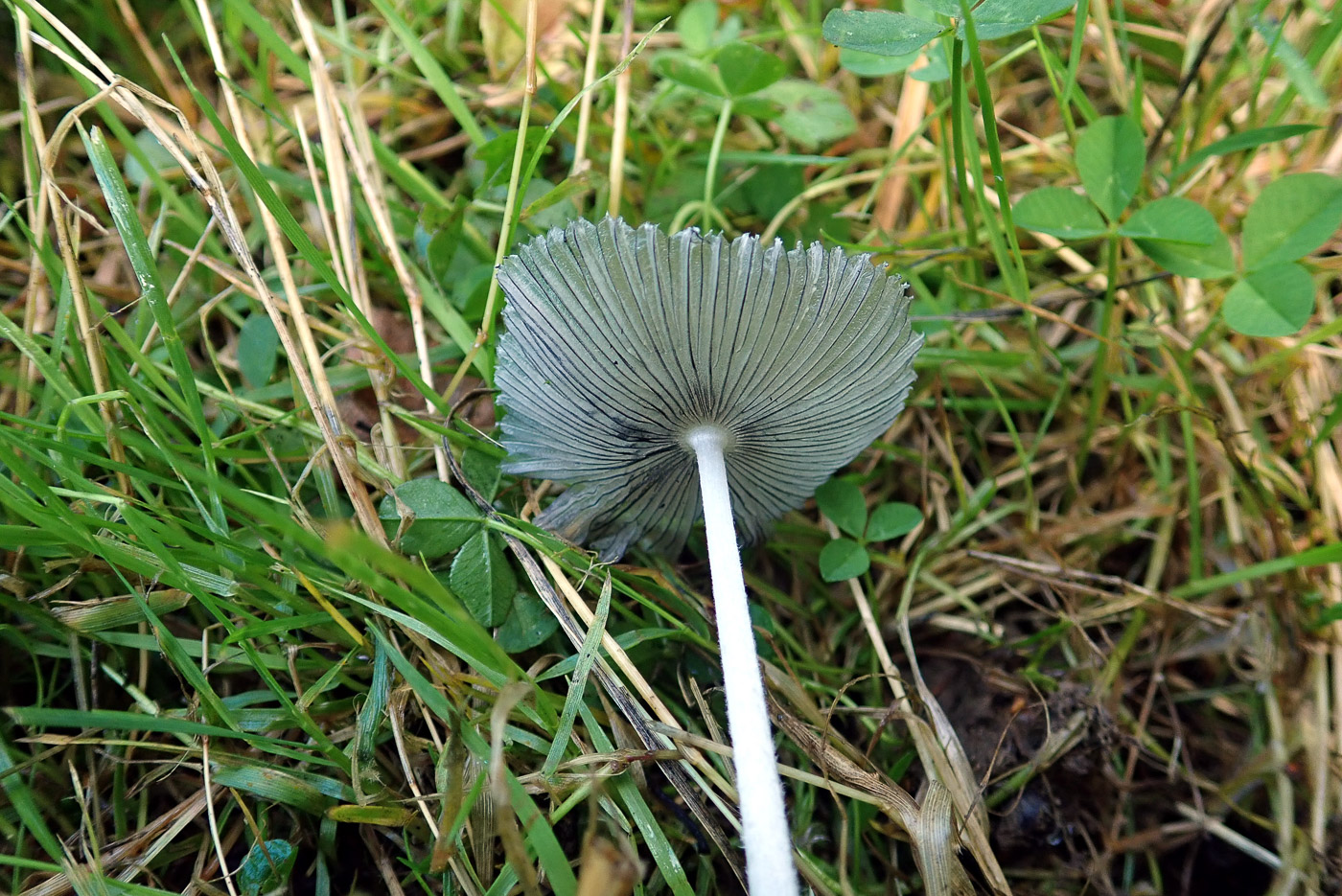
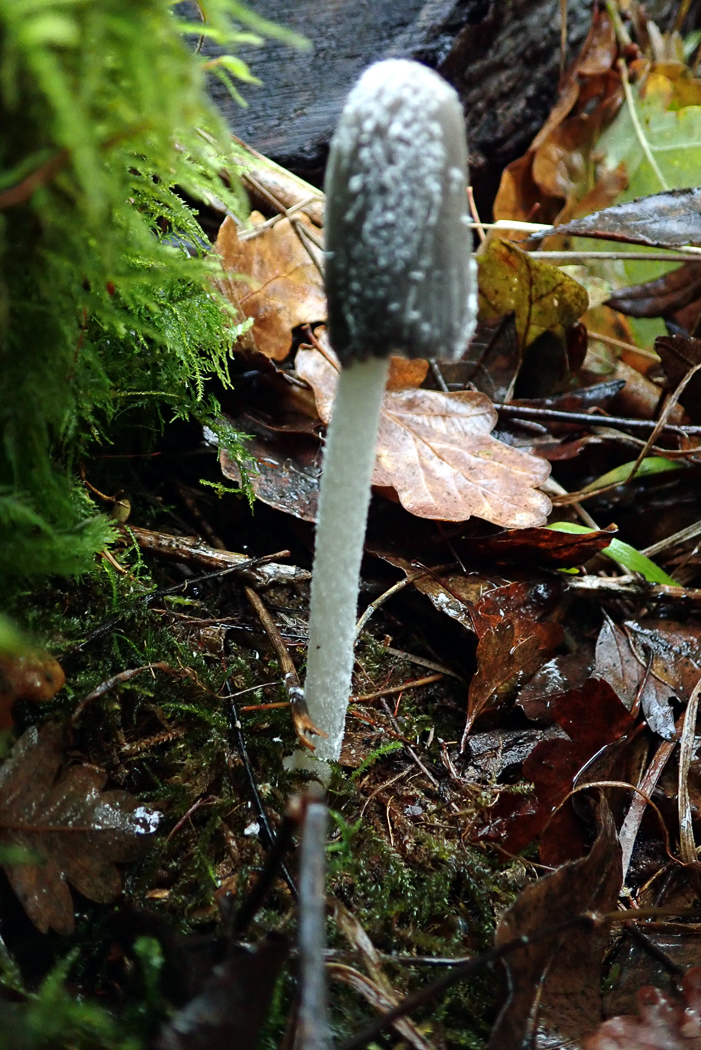 |
October 1st Coprinopsis lagopus (Hare'sfoot Inkcap) 
This delicate and clearly mature Inkcap was found in grassy soil at Turville Heath by Penny Cullington. This is a species which starts out looking entirely different: an oblong enclosed acorn shape with a dense covering of whitish fluffy fibrils, hence the common name. (See photo 3 which shows an earlier stage, found by Penny in Rushbeds Wood on November 9th - not her greatest photo but at least it shows some of the fluffy veil still on the cap.) As seen in photos 1 and 2, it's not long before it withers and deliquesces into an inky mess, but it did last long enough for Penny to find the microscopic details at home to confirm the identification. A common Inkcap found in woodland litter, often also on woodchip.
|
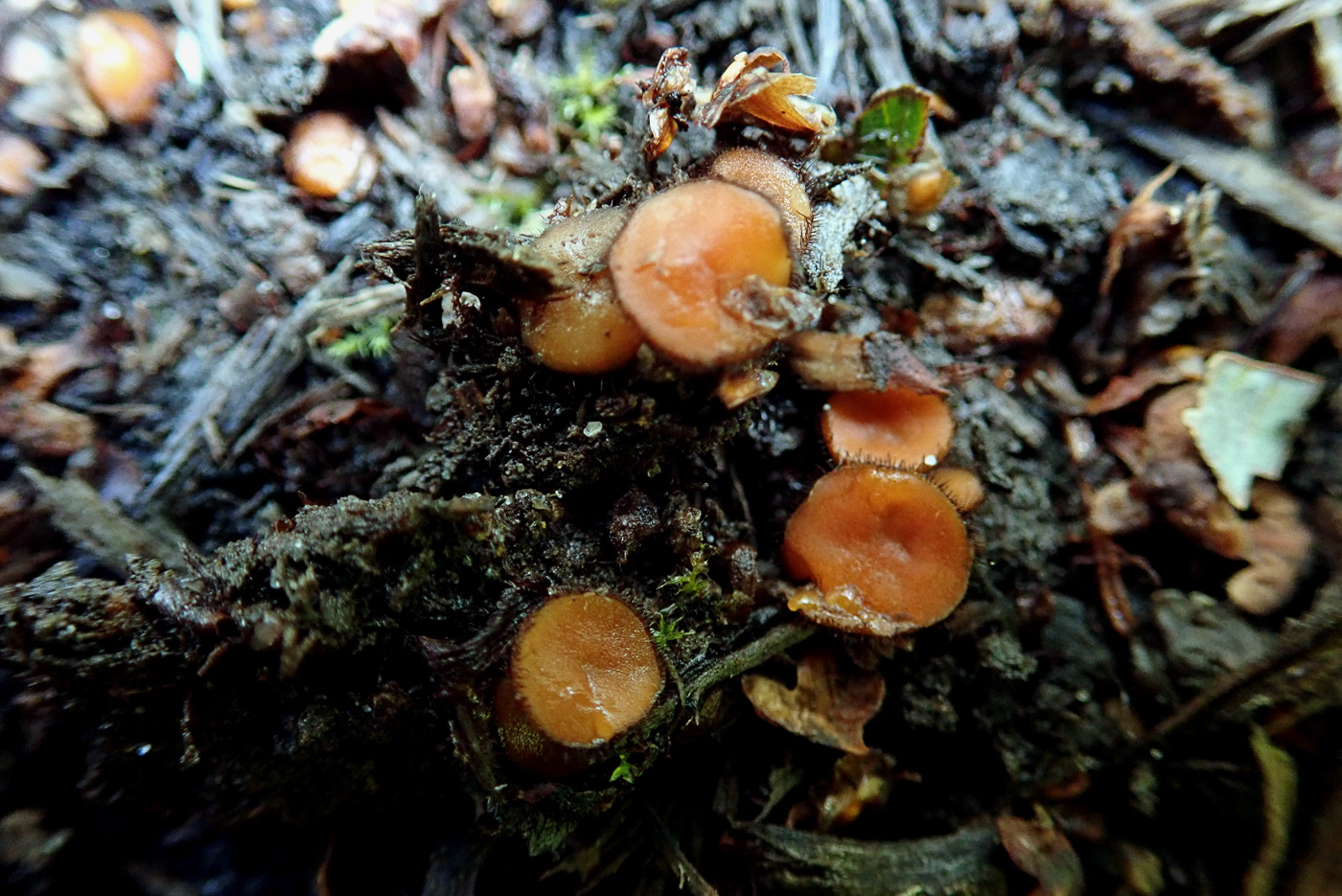
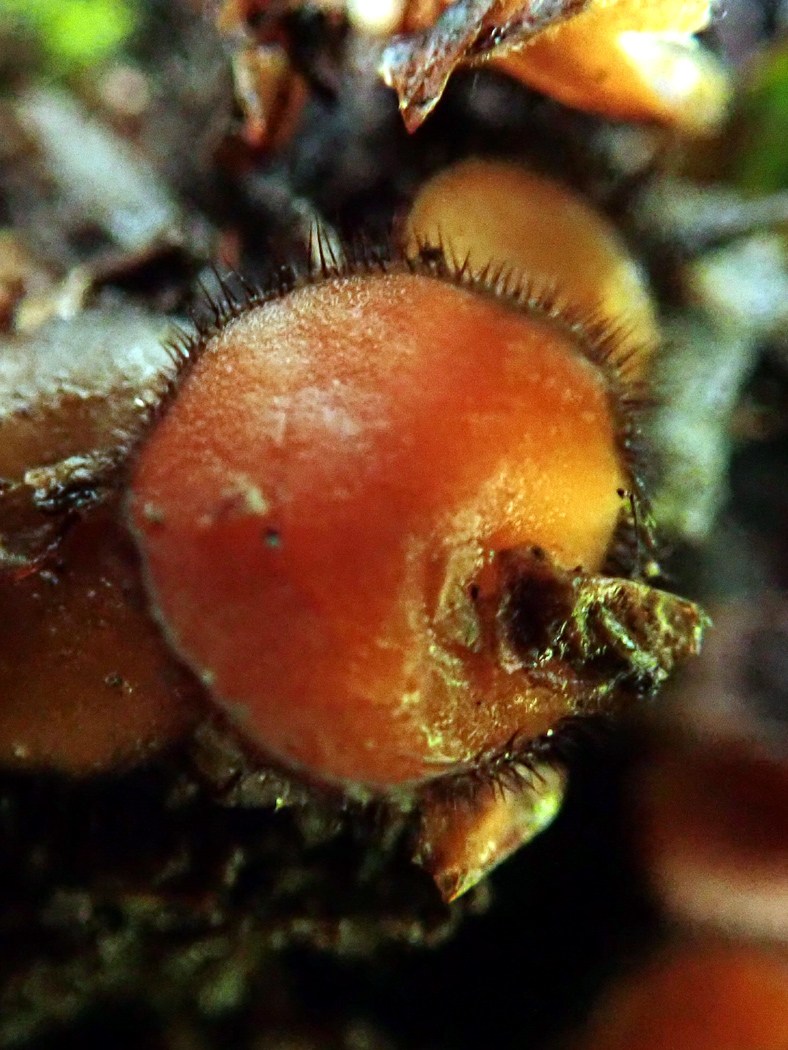 |
October 1st Scutellinia scutellata (Common Eyelash) 
This attractive little Ascomycete was found by Penny Cullington on a damp woodchip pile at Turville Heath. Only 5mm across, each tiny cup is edged with dark 'hairs', hence the common name. There are several quite common species of Eyelash, all extremely similar in appearance, and they are found in damp places either on soil or woody remains. Identification to species level can only be made by measuring the spores and the length of the hairs, but this species is the commonest and has the longest hairs.
|
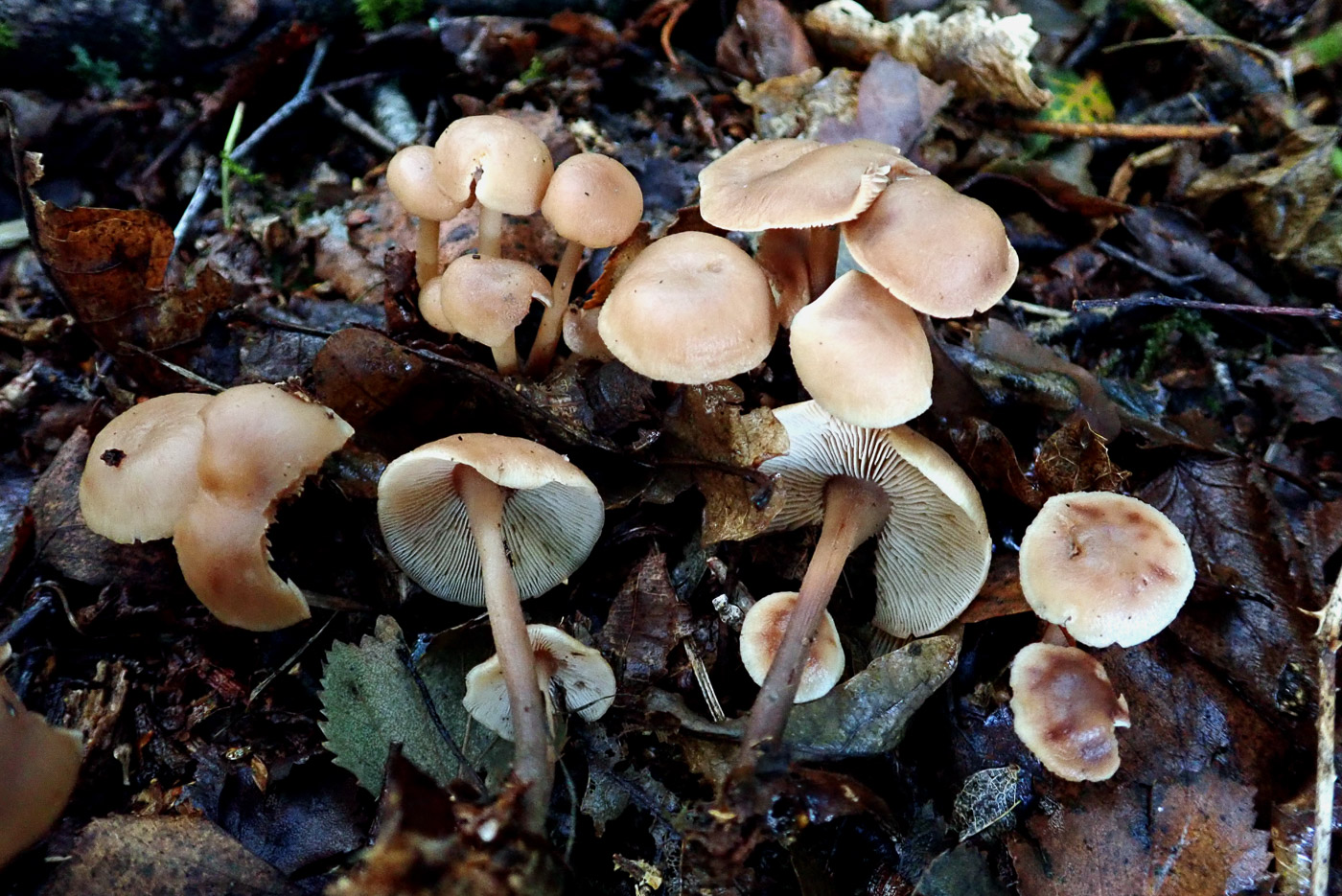
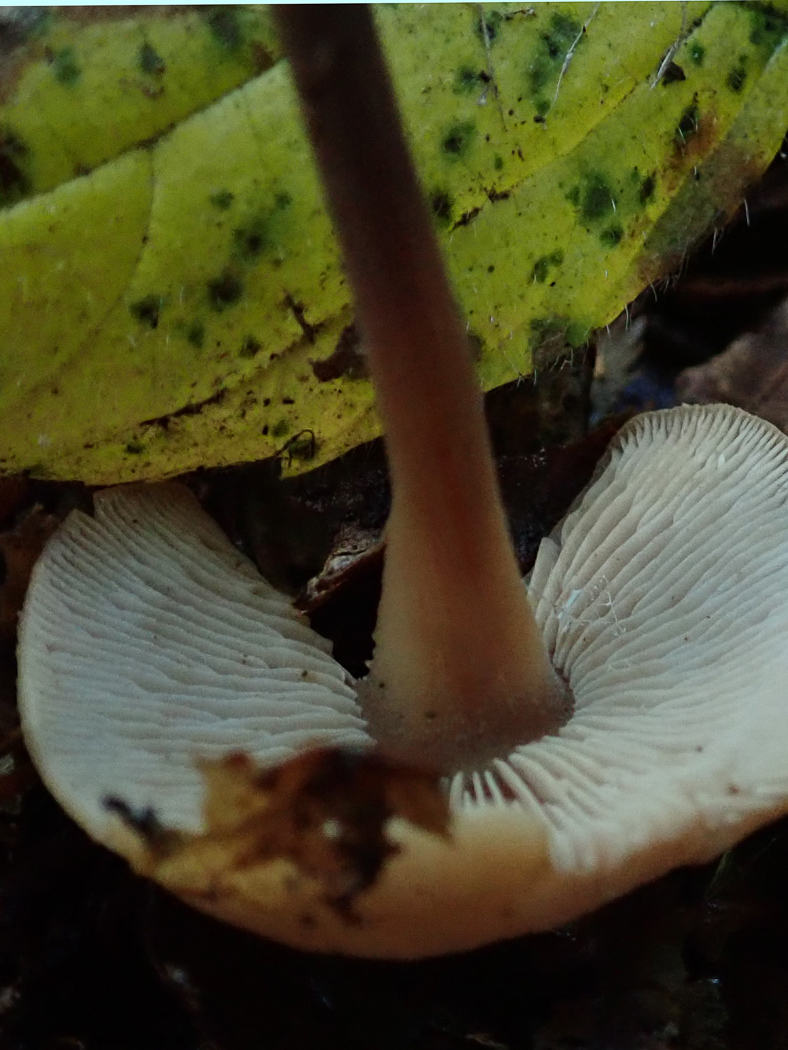 |
October 1st Gymnopus confluens (Clustered Toughshank)
This collection (previously in genus Collybia) was found growing under Oak at Turville Heath by Penny Cullington. A typical rather rubbery flexuouse Toughshank, it is quite common and similar to many other brown capped mushrooms growing in woodland litter until you turn one over and notice the very crowded pale gills and stem which is finely furry all over and gradually darker lower down (also often hollow). Its clustered habit is also typical though occasionally one finds singletons! (Note the detailed photo is not out of focus but might appear so because of the furry stem surface.)
|
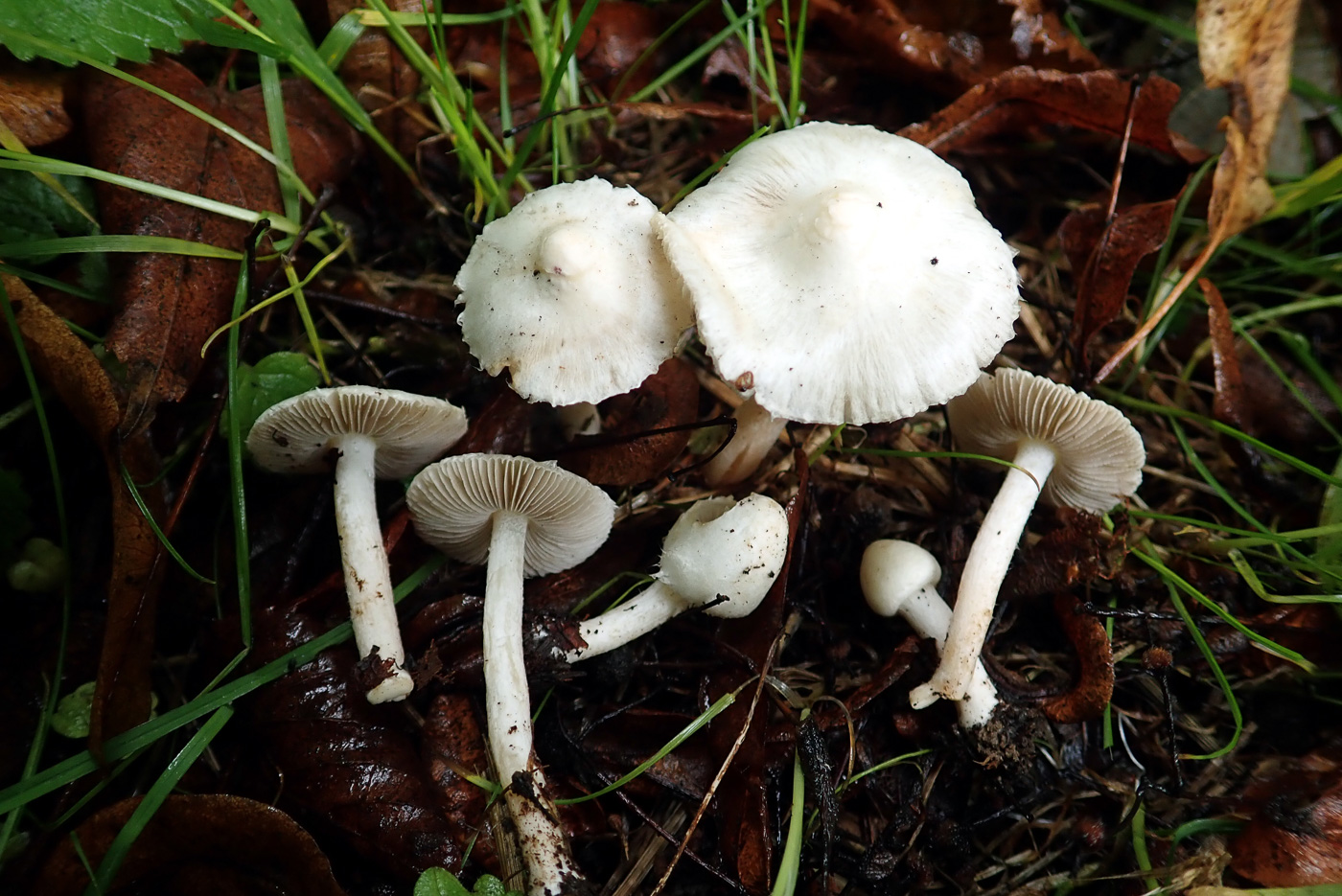 |
October 1st Inocybe geophylla (White Fibrecap)
This, one of the commonest Fibrecaps, was growing in troops under Limes today at Turville Heath, found by Penny Cullington. A small species with caps under 3 cm across at most, it is easily mistaken for perhaps one of the white capped Hygrophorus species (Woodwaxes) or a small white Tricholoma (Knight) until one turns a fruitbody over and sees the typical gill colour of the genus: beige to buff when young then gradually darker snuff brown when mature. (Woodwaxes and Knights have white gills.) It is not the only white-capped Fibrecap but others are extremely rare. It occurs under many different deciduous trees.
|
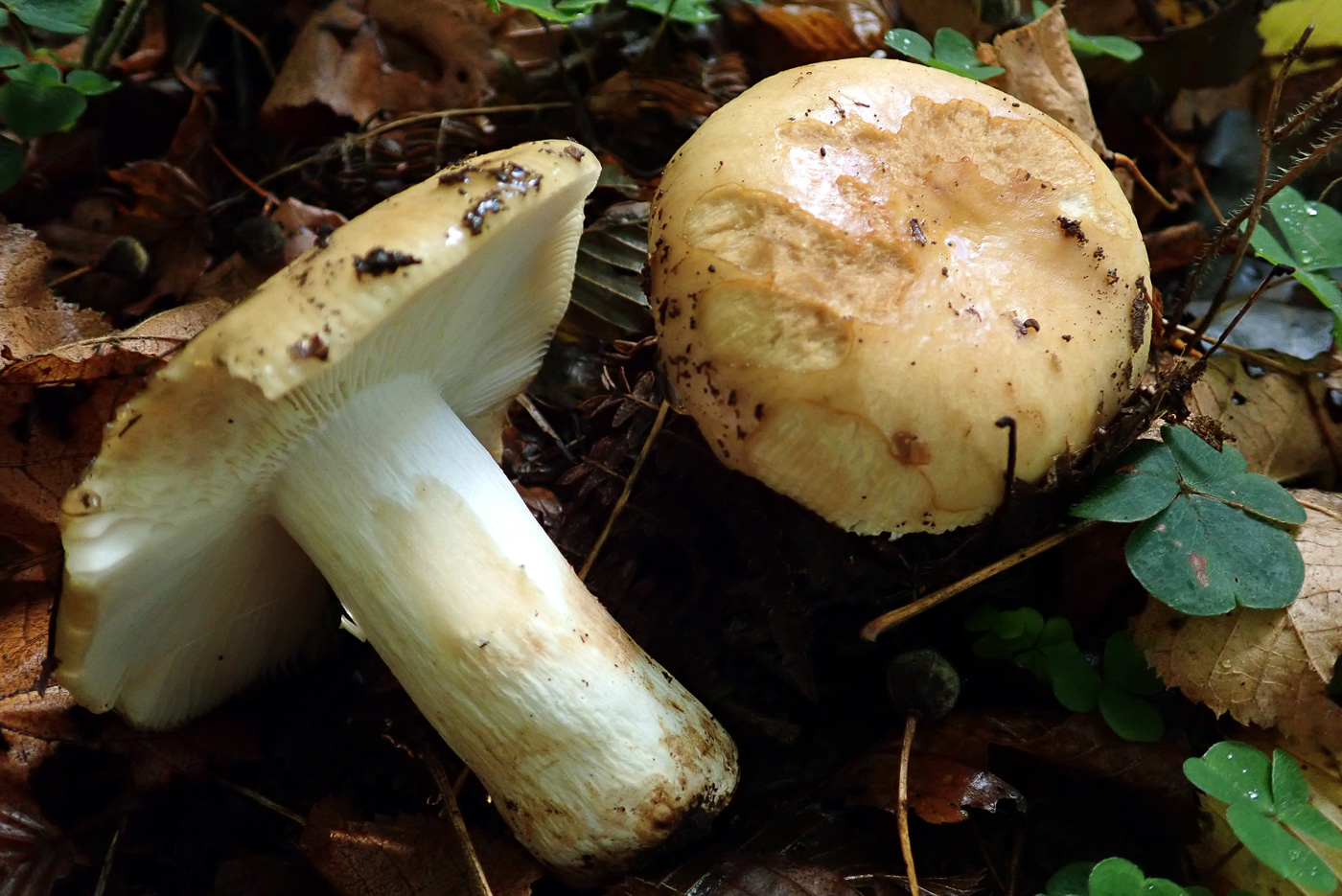 |
October 1st Russula grata (Bitter Almond Brittlegill)
Penny Cullington found this occasional Brittlegill under Lime and Oak at Turville Heath. This belongs to the group of Brittlegills known as the 'smellies' and is one of several large species which look almost identical in the field having sticky ochre caps and retaining their rounded shape until maturity (see also R. subfoetens dated Sept 22). Today's species, rather than having the rather unpleasant sour smell of the look-alikes - R. foetens and R. subfoetens - has a beautiful sweet smell of almonds or marzipan. It's always a pleasant surprise to put this one under one's nose because it is far less common than the sour smelling species.
|
September 30th 2020
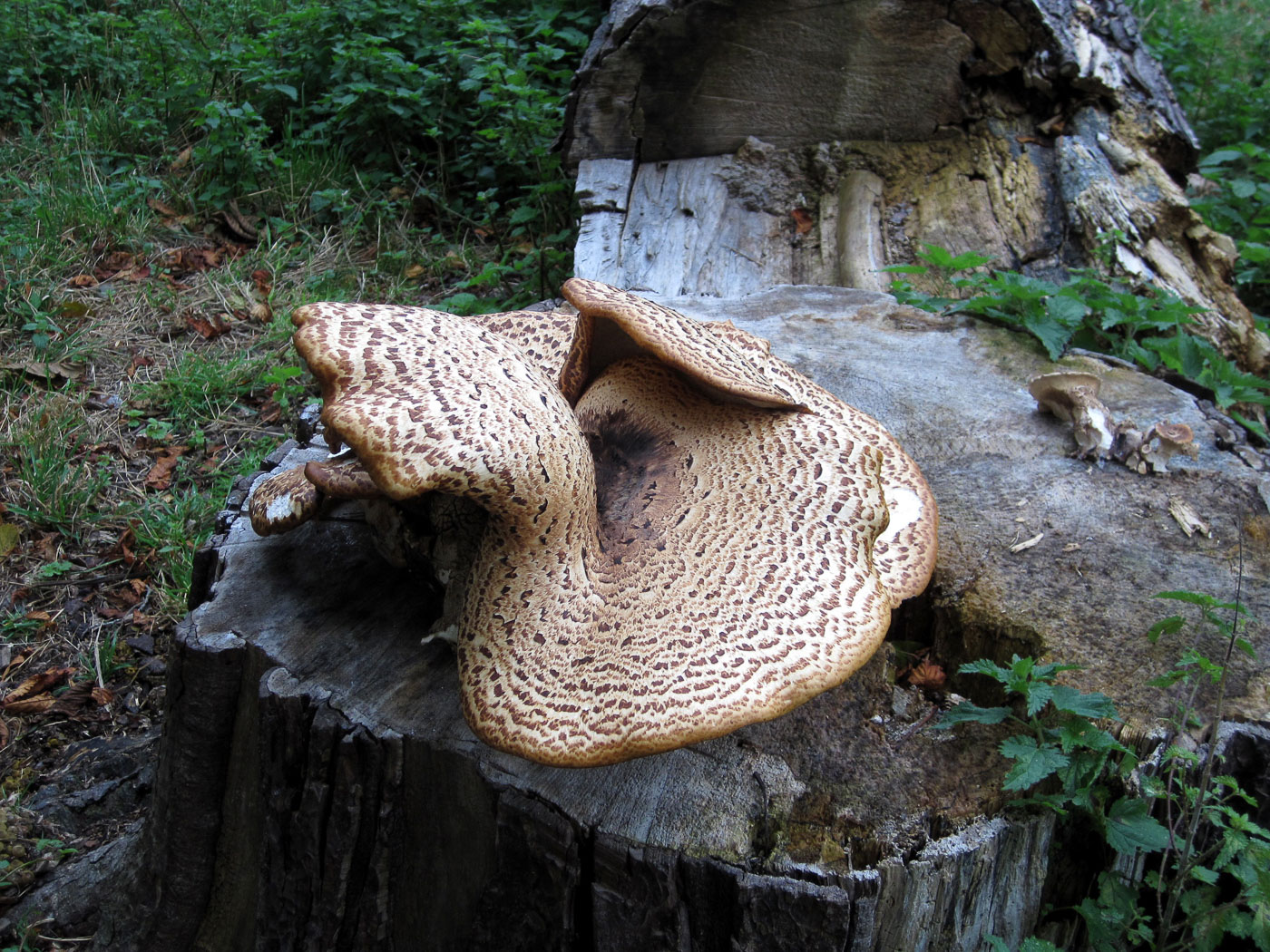
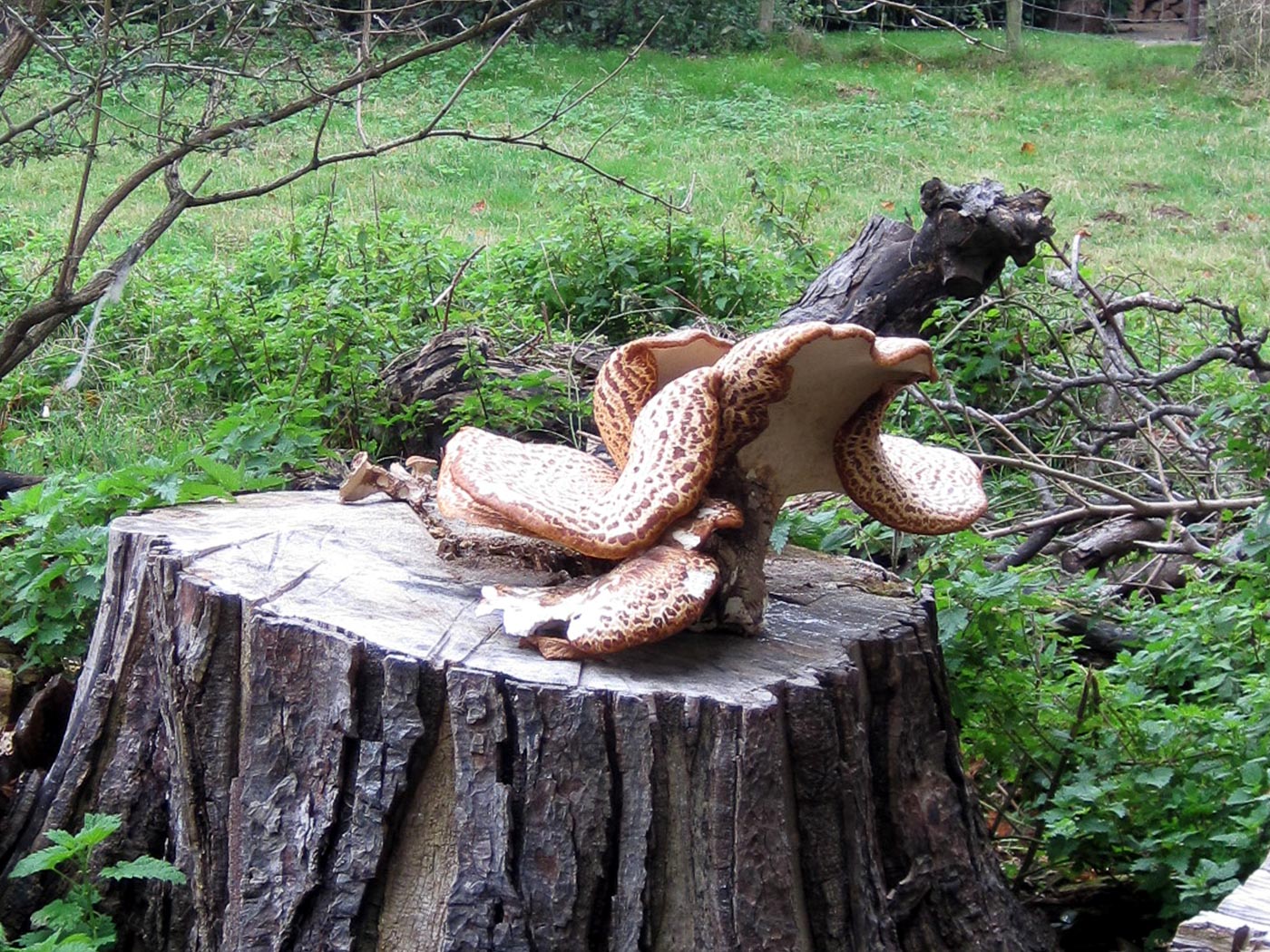 |
September 30th Polyporus squamosus Polyporus squamosus
This stunning fungus was found growing out of the top of a Horse Chestnut stump by Joanna Dodsworth at Brill Walks. By far the largest of our scaly capped Polypores, it often grows high up on living trunks as a saddle shaped bracket reaching 2 ft or more across, hence the common name. It is unusual to find it so erratically formed as here, having emerged from the centre of a stump and forming not such a comfy saddle! Note the pale cream pores underneath visible in the second photo.
|
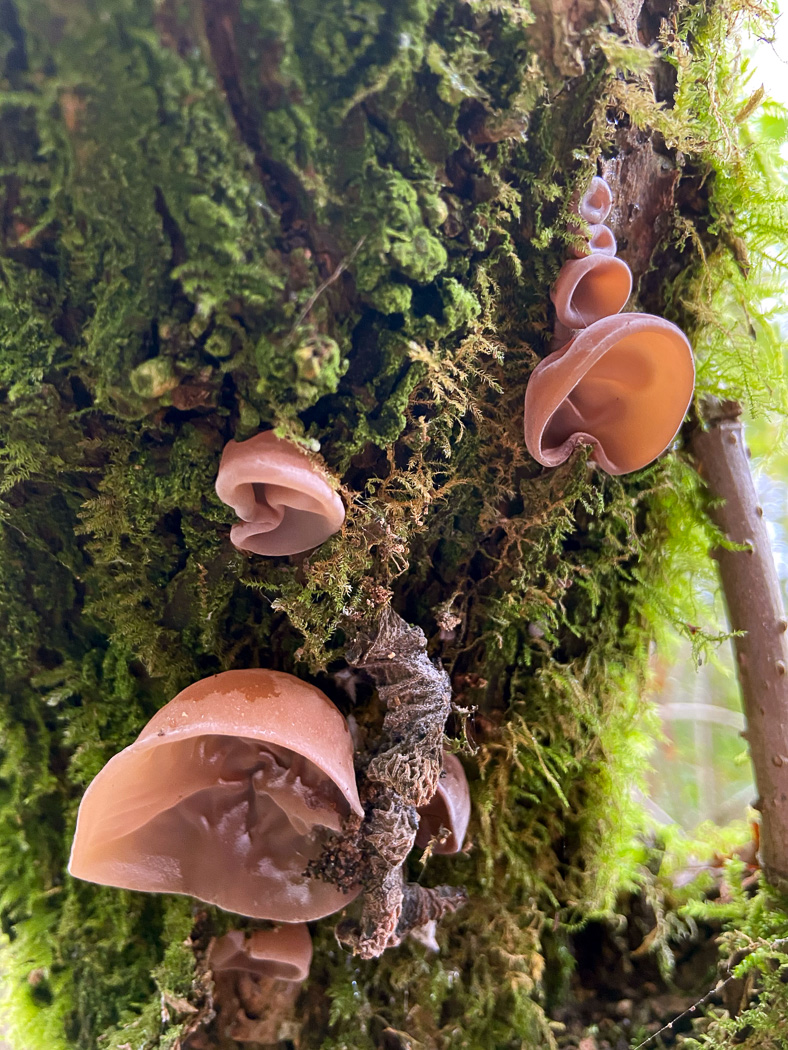 |
September 30th Auricularia auricula-judae (Jelly Ear)
Sarah Ebdon found this nice collection in Bradenham Wood growing on living Elder. A very common fungus fruiting at any time of year given favourable conditions, it is surprising that this unmistakeable species has been conspicuous by its absence this season until now. It's normal host tree is Elder but it is quite often found on fallen Beech and occasionally on other wood. No further comments needed - the common name says it all!
|
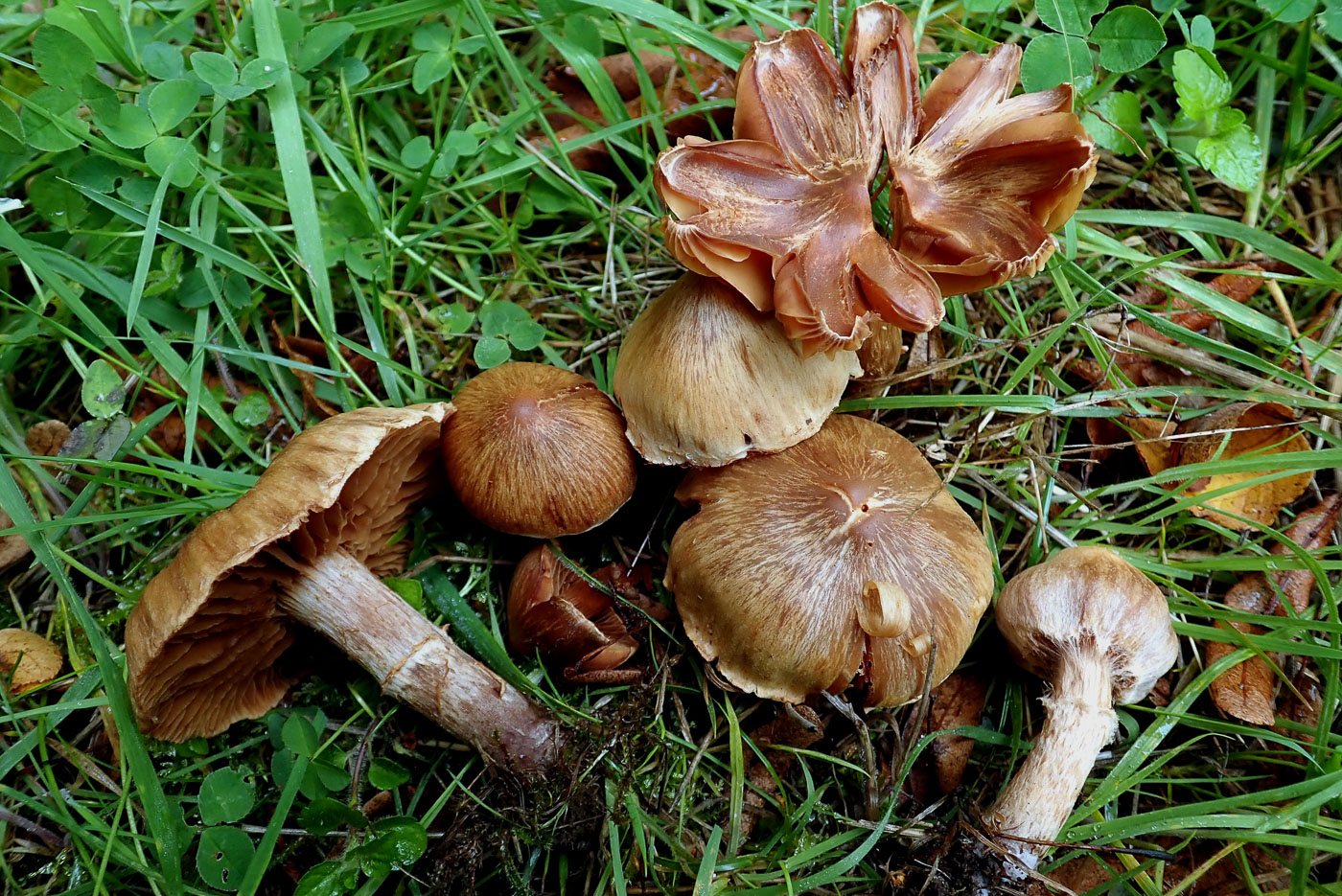
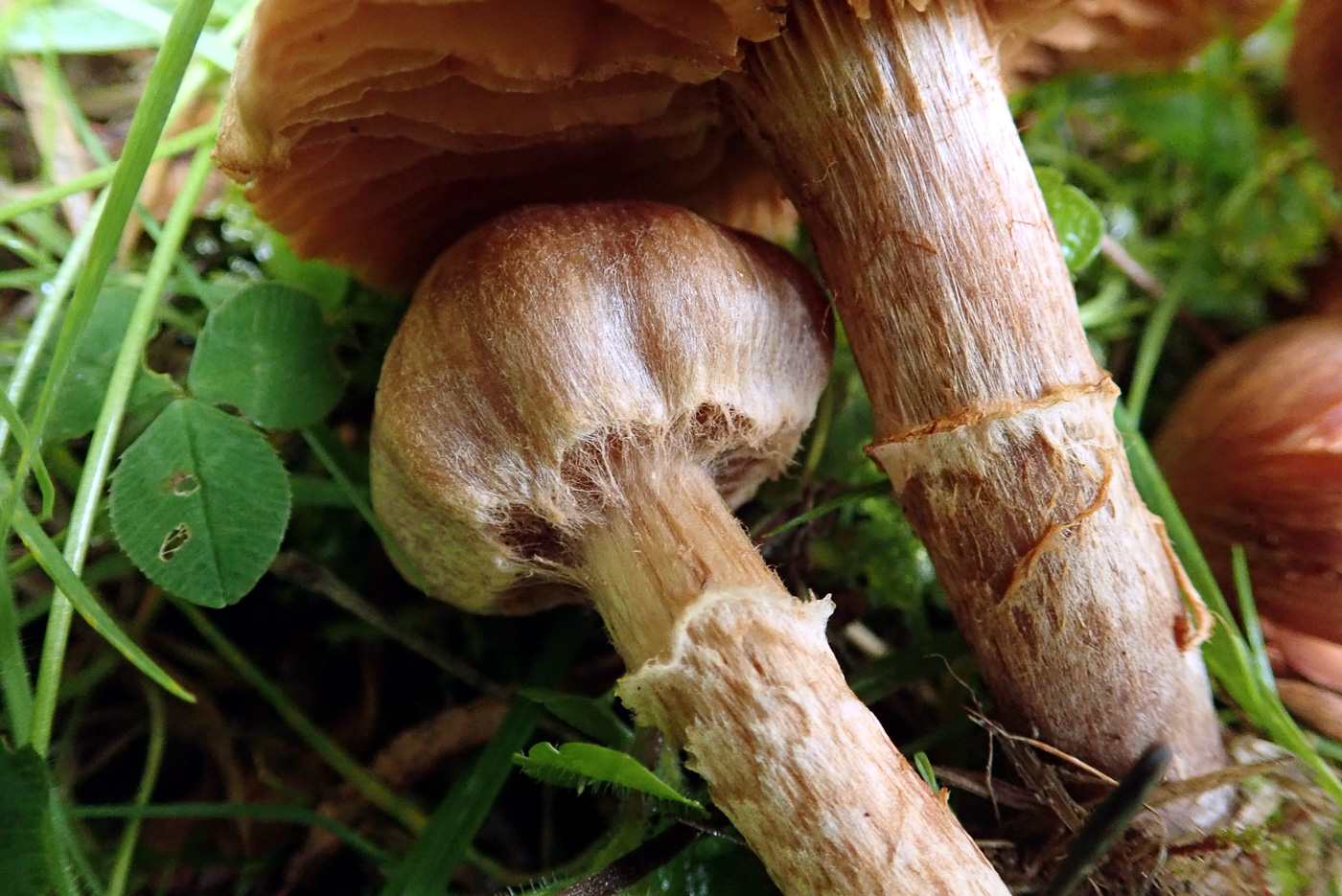 |
September 30th Cortinarius hinnuleus (Earthy Webcap)
This was found growing under Lime, one of its known host trees, at Turville Heath by Penny Cullington. Not rare but probably under-recorded as very few Webcaps belonging to the large and difficult group Telamonia are nameable, thus many mycologists tend to pass them by. It is interesting that in the last few days three related Telamonia Webcaps have turned up, all belonging to the Hinnulei complex now sorted out with DNA. This complex shares the notably widely spaced orangy gills and earthy smell, and today's species has a particularly pungent earthy smell (hence the common name) and occurs under several deciduous trees. Compare with C. lacustris (dated Sept 27th) and C. hinnuleoarmillatus (dated Sept 28th) both considerable rarities.
|
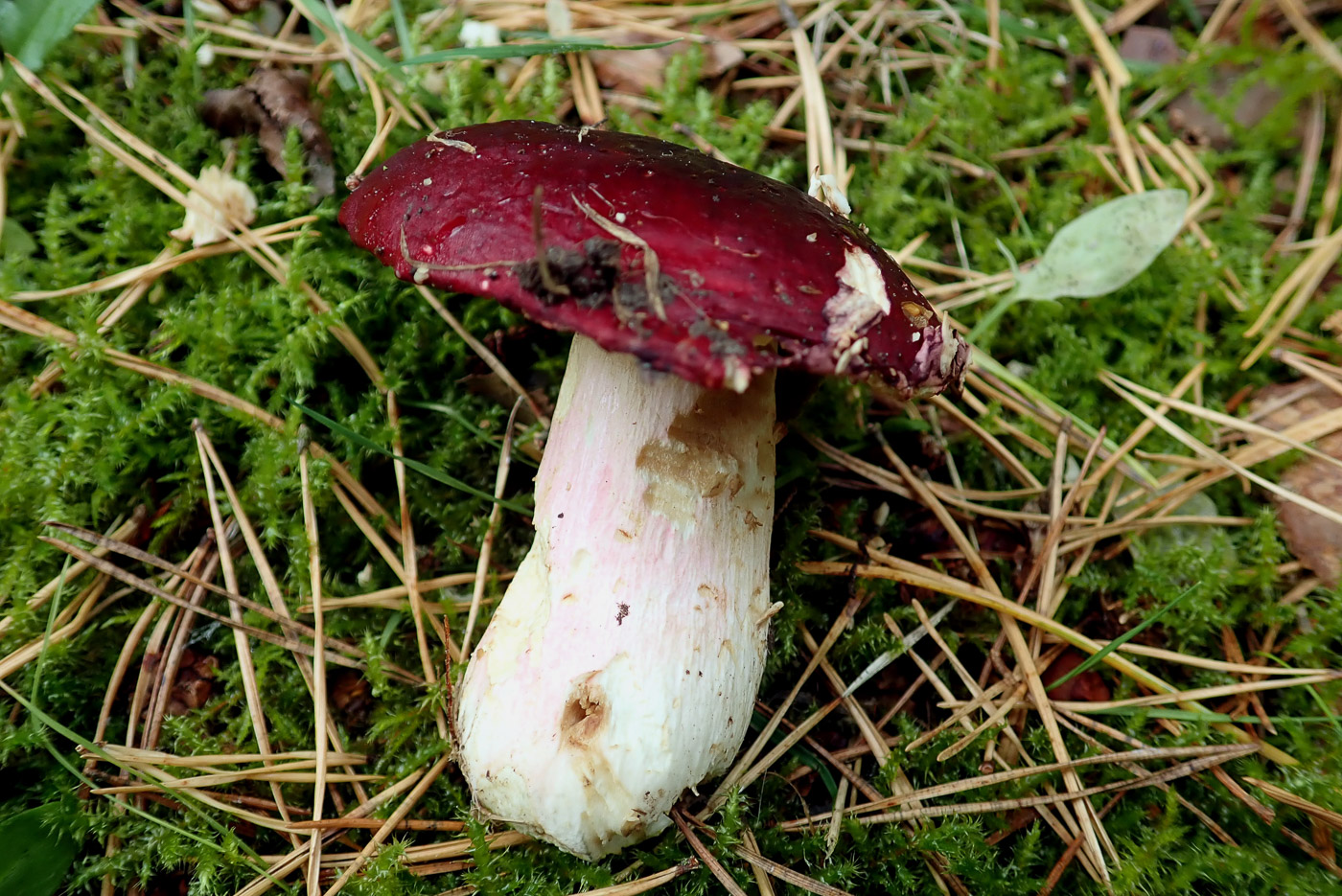
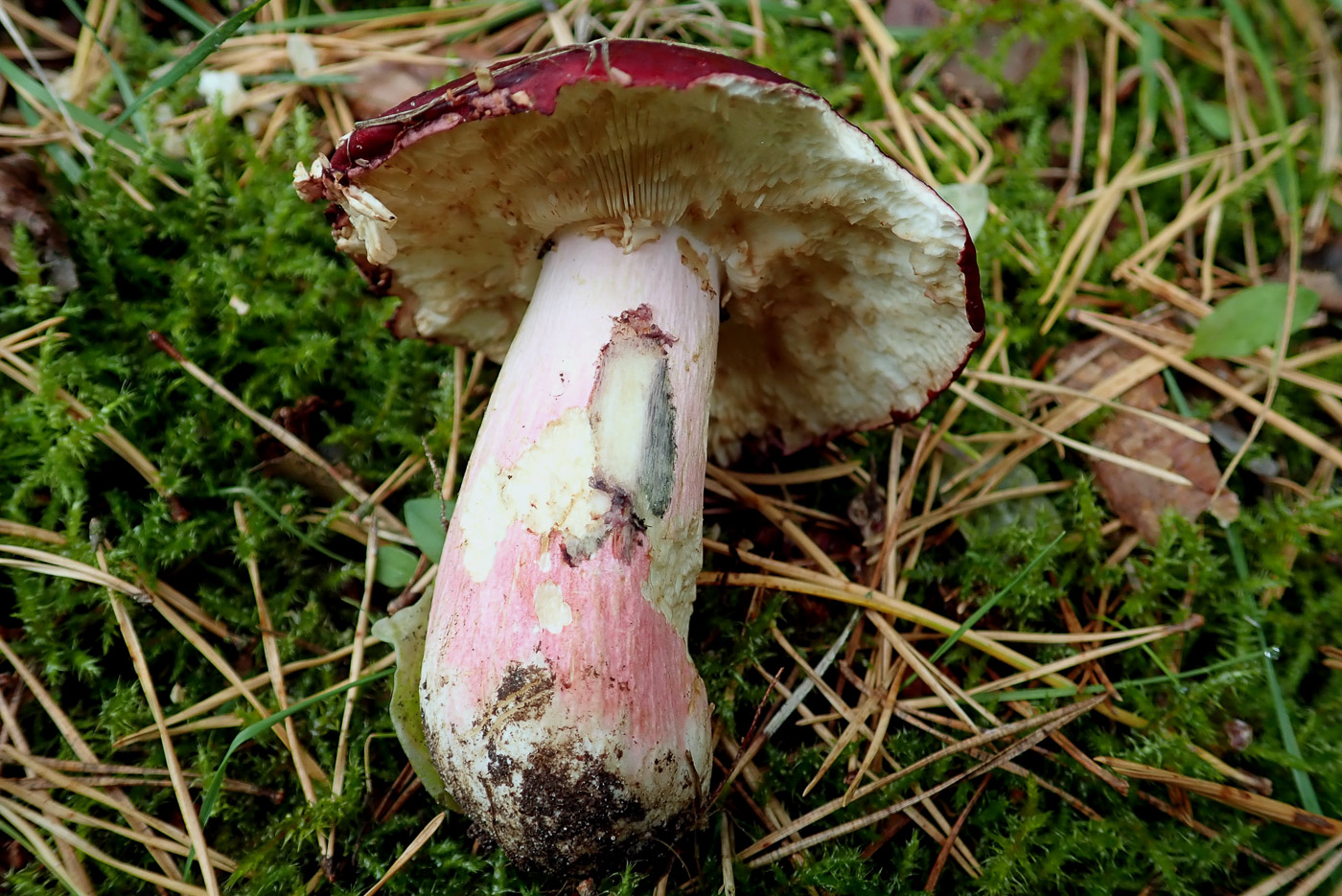 |
September 30th Russula xerampelina (Crab Brittlegill)
Penny Cullington was surprised and pleased to find this rare species under a mature Pine, its host tree, at Turville Heath. Though we have quite a few county records named as this species it is likely that most of them are incorrect. Until fairly recently it was safe to name any Brittlegill which developed a smell of cooked crab and the stem, when rubbed with a Ferrous Sulphate crystal, turned dark green, as R. xerampelina. It is now known that this is a large complex of species still not fully understood. In the south we find and recognise about three of these, one of which (R. faginea dated Sept 27) grows under Beech. What we now call the true R. xerampelina (which grows exclusively under Pine) is common in Scotland but considerably less so elsewhere. It is a large robust Brittlegill with a blood red to purplish red cap with a substantial clavate stem having distinct pink red patches.
|
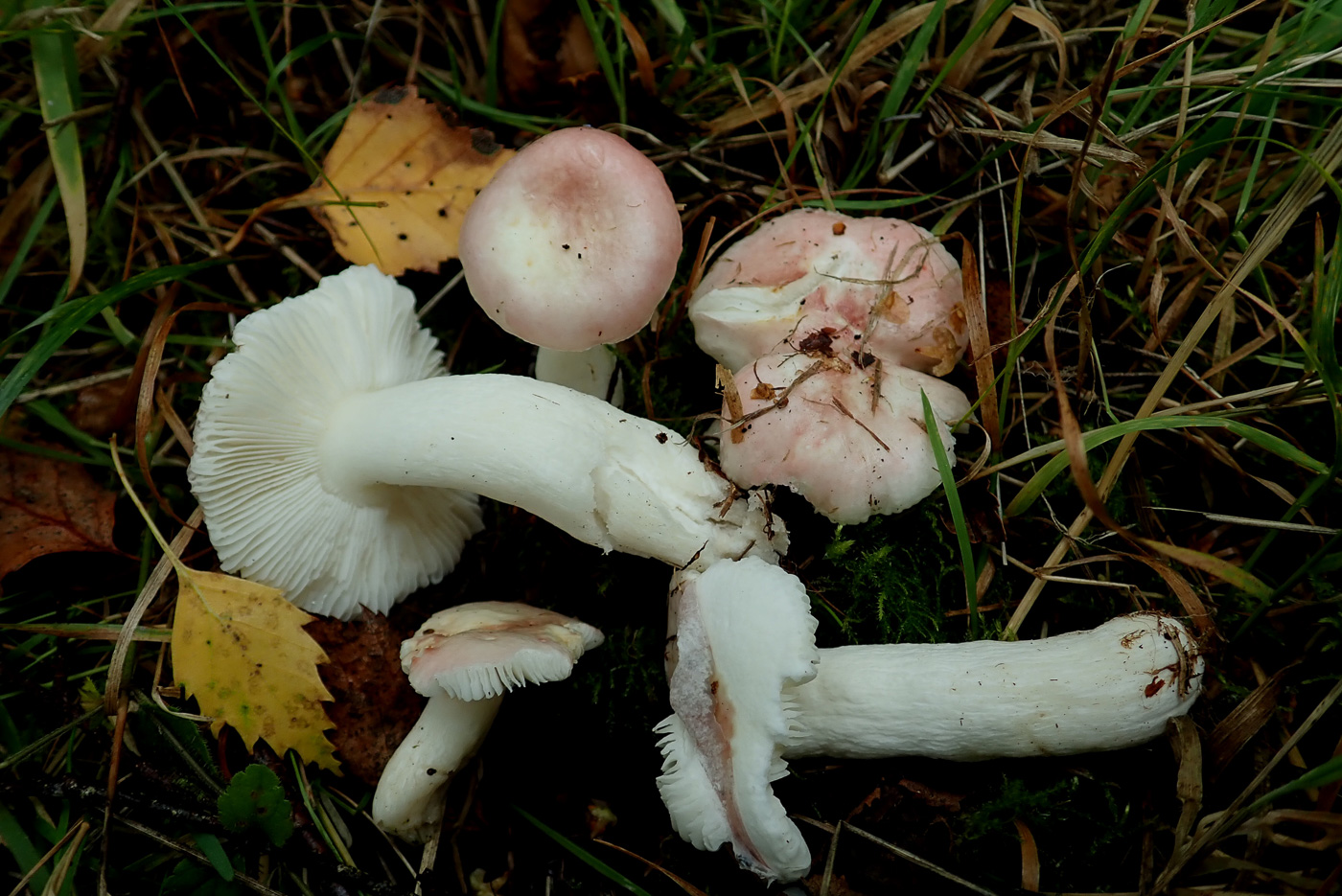 |
September 30th Russula betularum (Birch Brittlegill)
Another common Brittlegill conspicuous by its absence so far this season, it was found under Birch, its host tree, at Turville Heath by Penny Cullington. All parts of the fruit body are very fragile thus making it difficult to collect without damage, so a pink capped Brittlegill under Birch which is fragile is one of the easiest to name in the field. Further confirmation is that the cap skin peels off almost completely. the cap colour can sometimes be almost white with only a hint of pink.
|
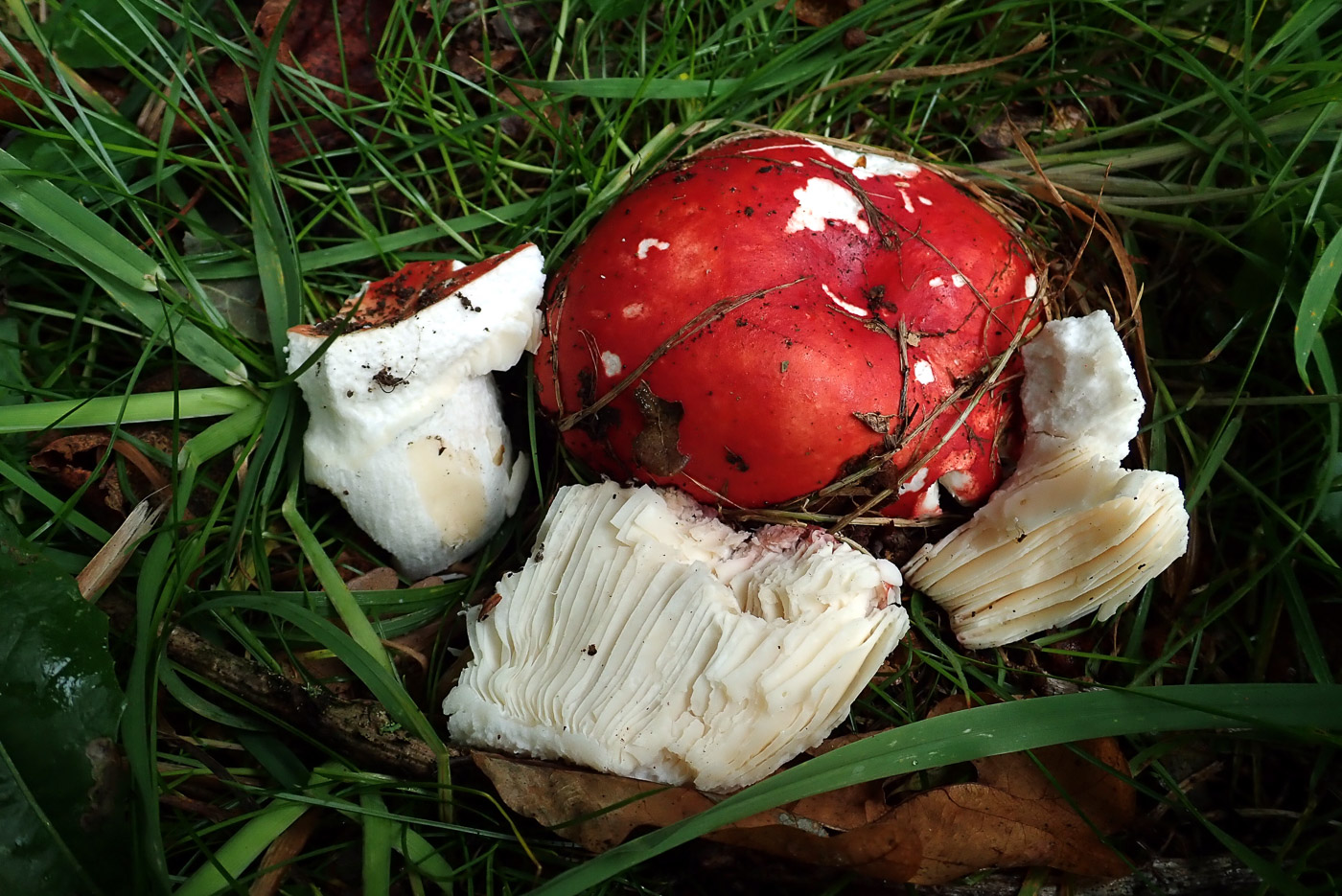
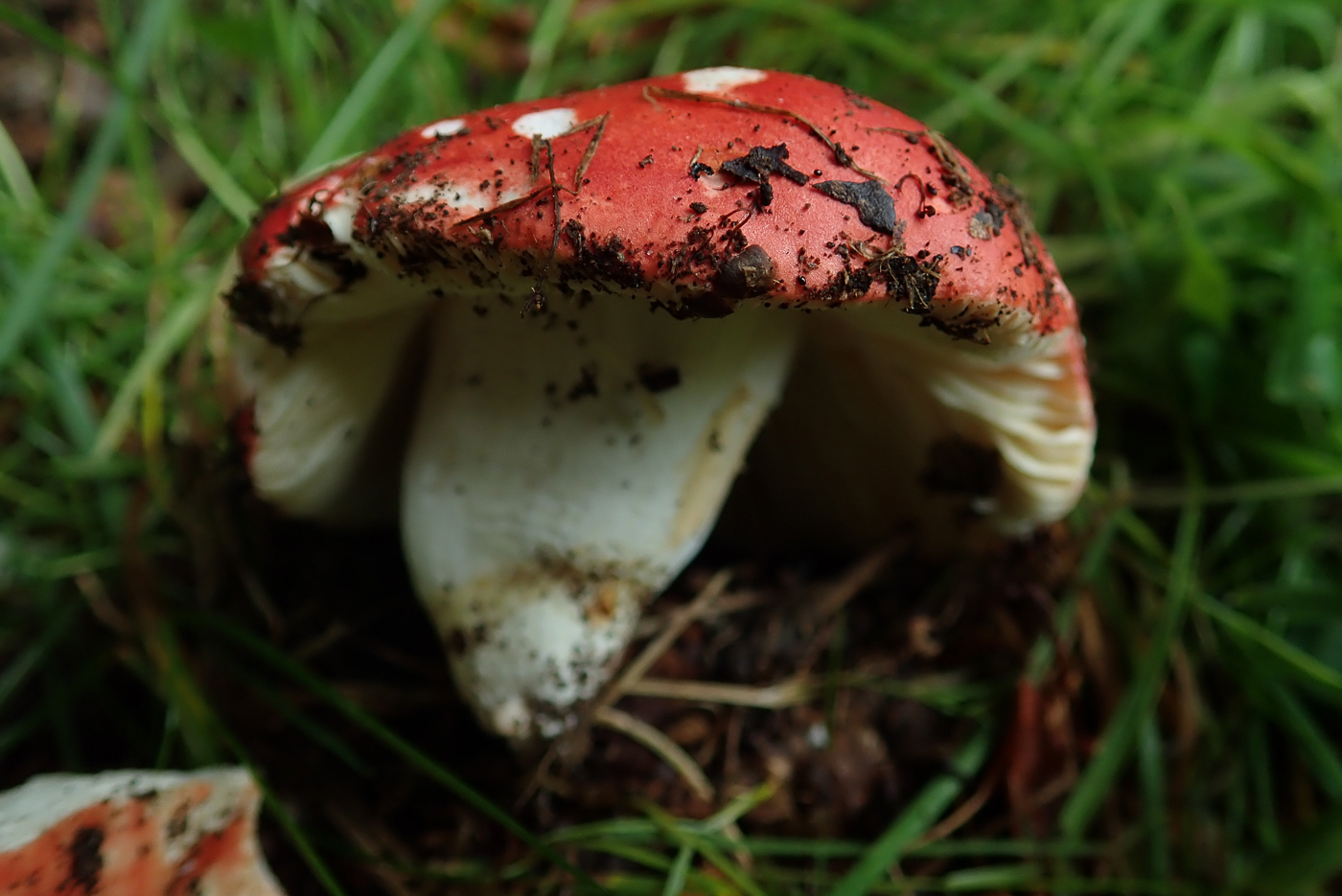 |
September 30th Russula pseudointegra (Scarlet Brittlegill)
This striking Brittlegill was found under Oak, its host tree, at Turville Heath by Penny Cullington. A large and not uncommon Brittlegill with caps up to 10 cm across, it is one of many having red caps but is possibly the most striking when shiny and fresh as it was today. Sadly the second specimen nearby was smashed but served to show the gill colour which starts out pale cream but eventually becomes yellow-orange in maturity. Just visible in both photos is the pale rusty salmon stem reaction when rubbed with a Crystal of Ferrous Sulphate.
|
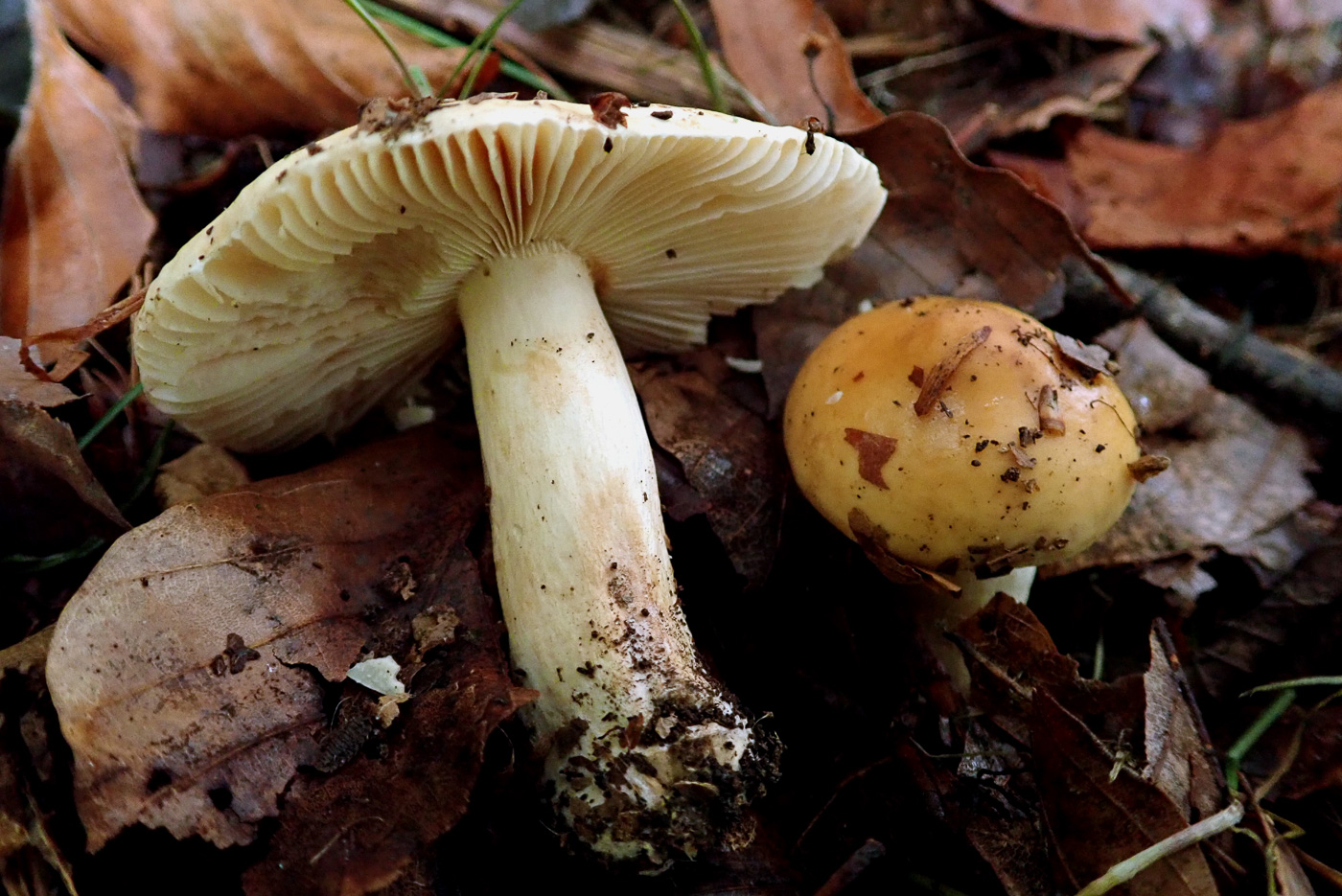
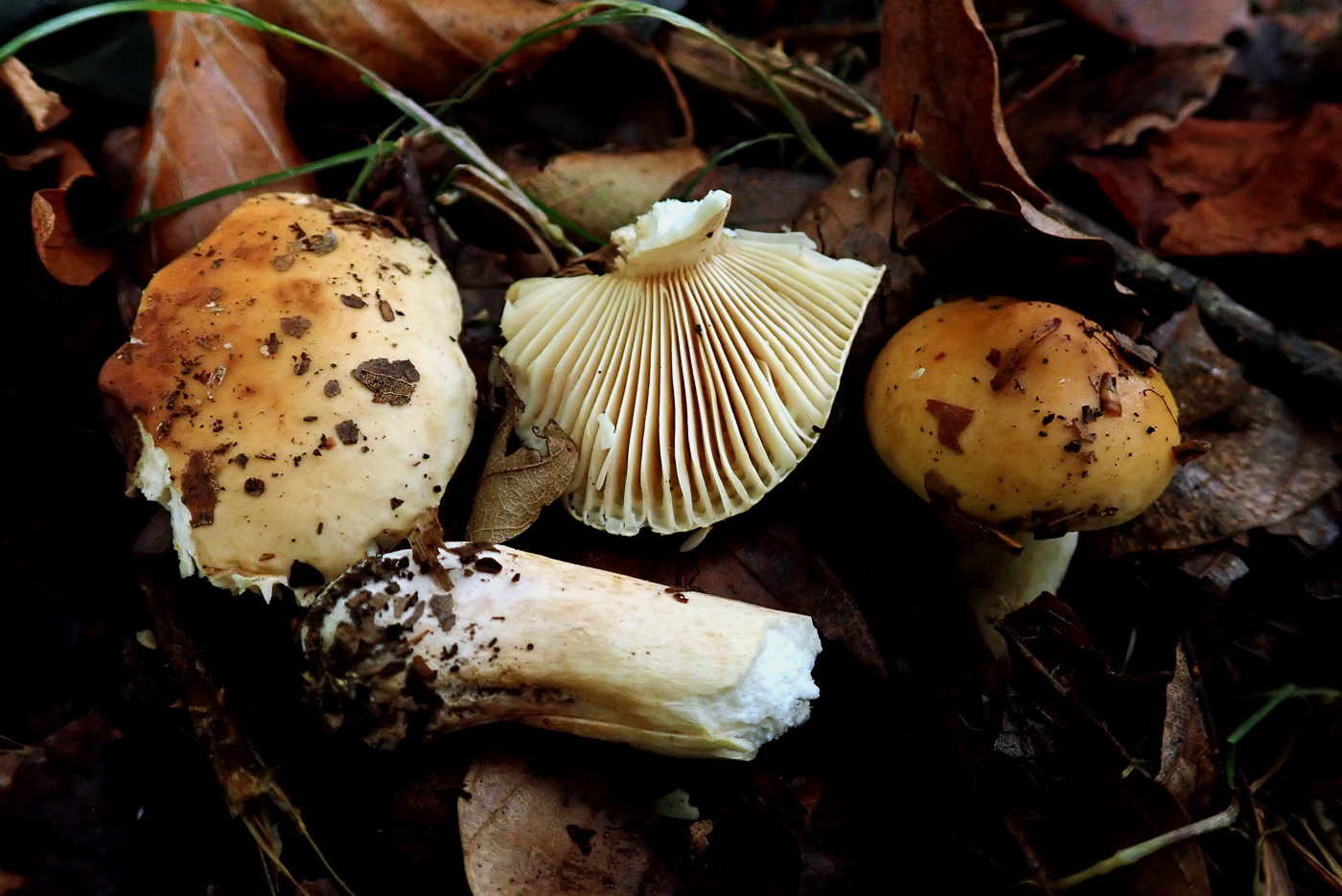 |
September 30th Russula fellea (Geranium Brittlegill)
This quite common Brittlegill has been conspicuous by its absence so far this season but was found by Penny Cullington under Beech, its host tree, at Turville Heath. We now have for comparison a full house of the yellow capped Brittlegills which have white to pale cream gills: R. ochroleuca (Sept 16), R. claroflava (Sept 15) , R. farinipes (Sept 22) and now R. fellea. The second photo here shows how in R. fellea the paler outer cap colour more or less matches the gills and stem whereas in the others there is a clear contrast between darker cap and paler gills and stem. Our species today also has a very distinctive smell: sweet, of stewed apple or for some Geranium, hence the common name.
|
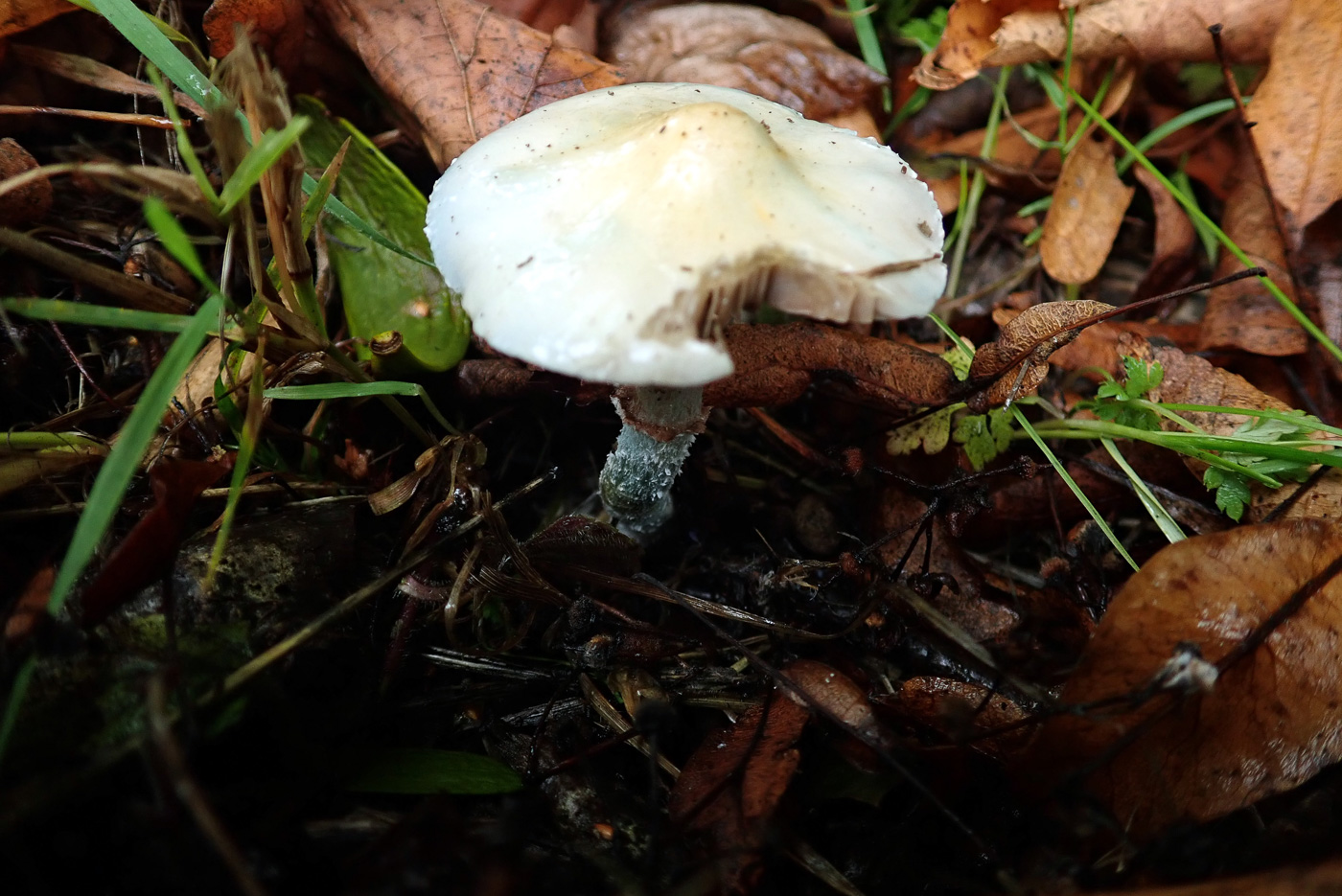
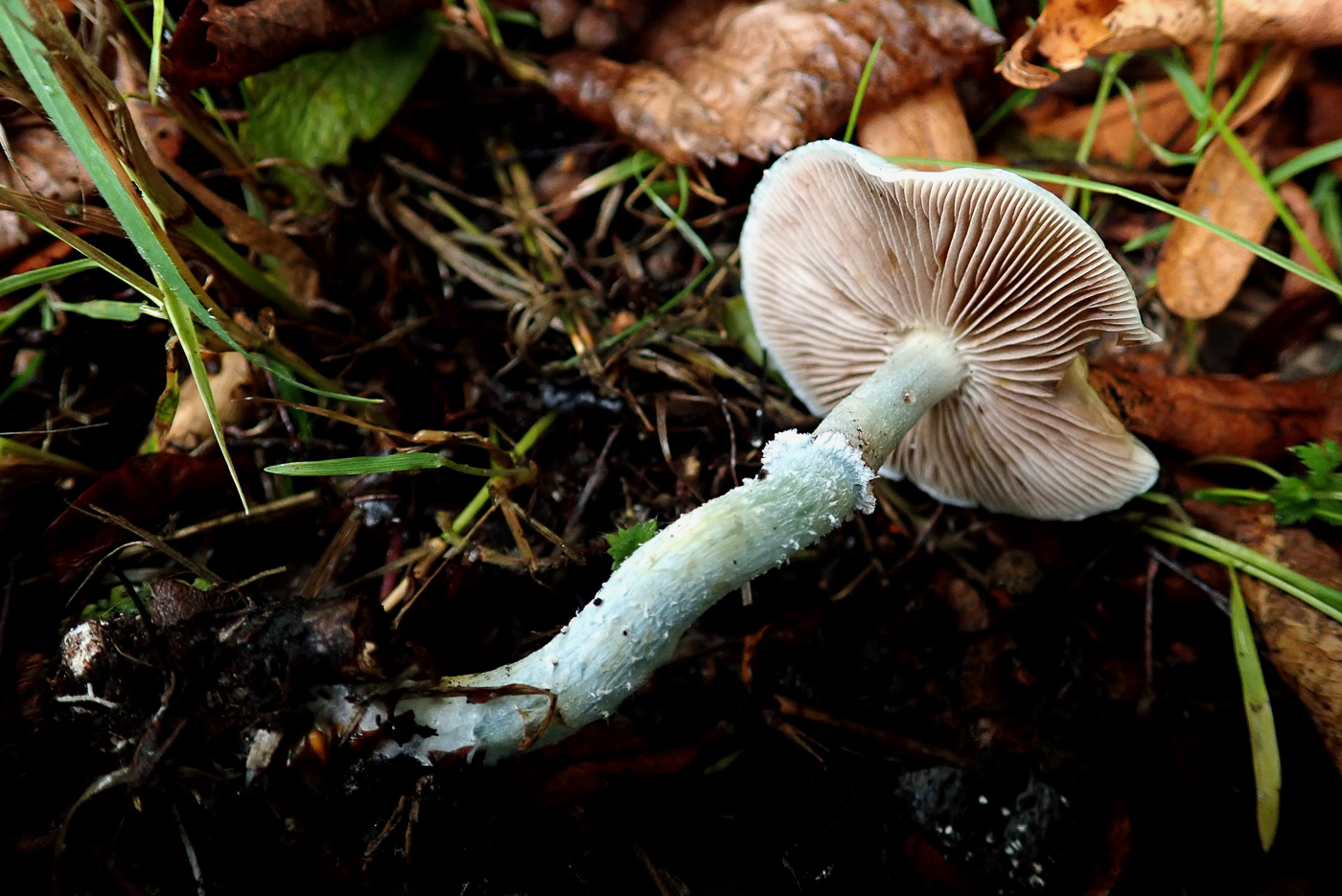 |
September 30th Stropharia caerulea (Blue Roundhead)
This common grassland species was found by Penny Cullington at Turville Heath. Sadly this was a singleton with a typically faded cap which when young and fresh is a beautiful blue-green. Caps are smooth and sticky, gills start out pale buff but gradually darken as the dark brown spores mature, stems are striking with a white edged blue ring and below this more blue flecked with white. A very attractive species.
|
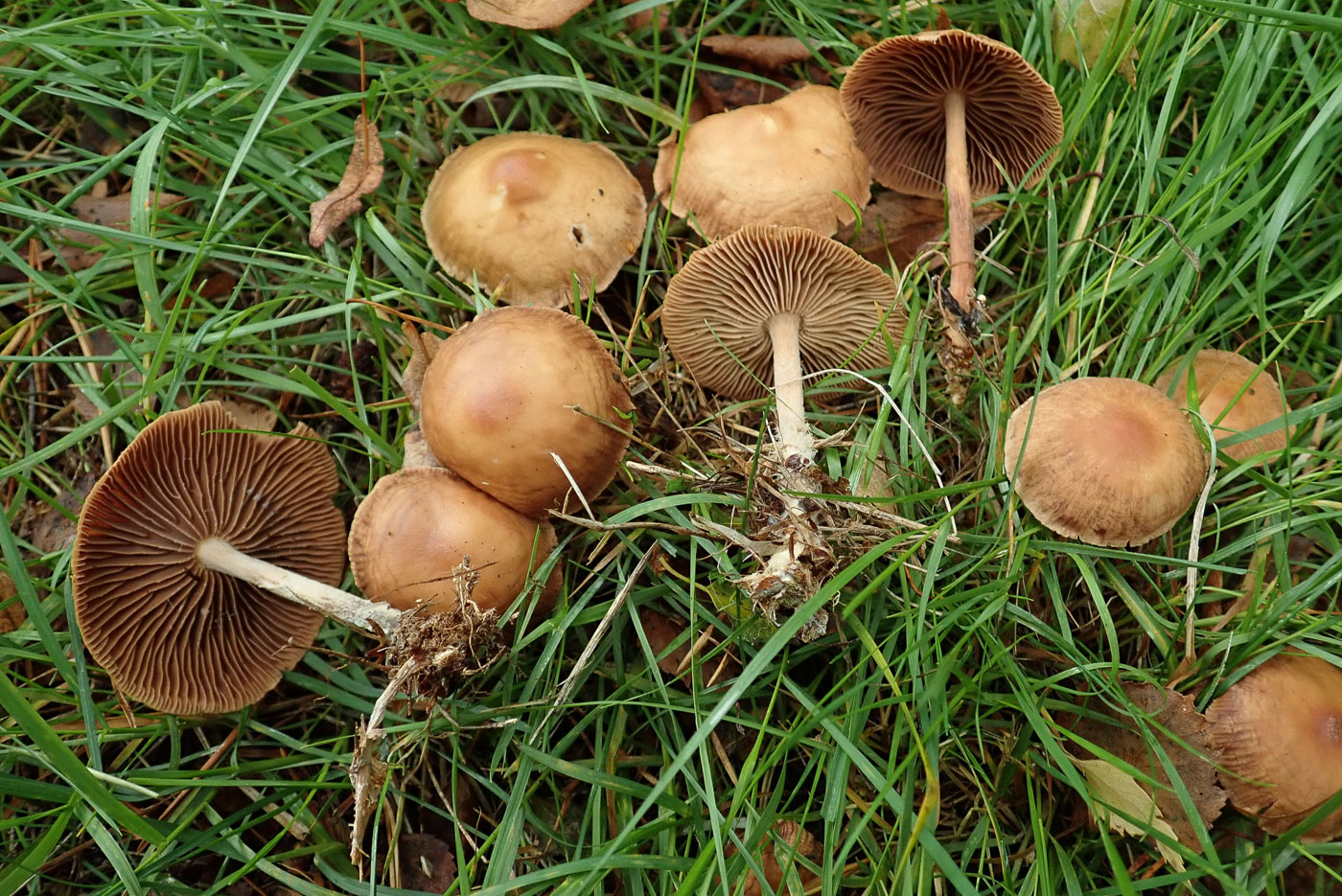
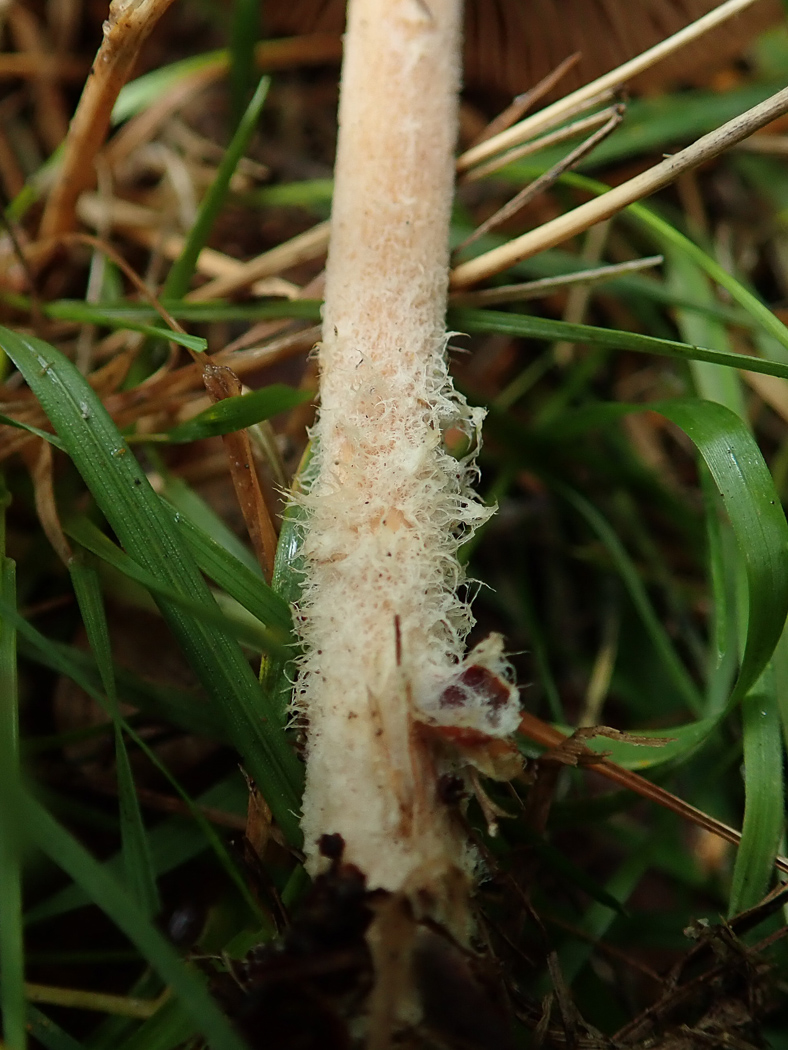
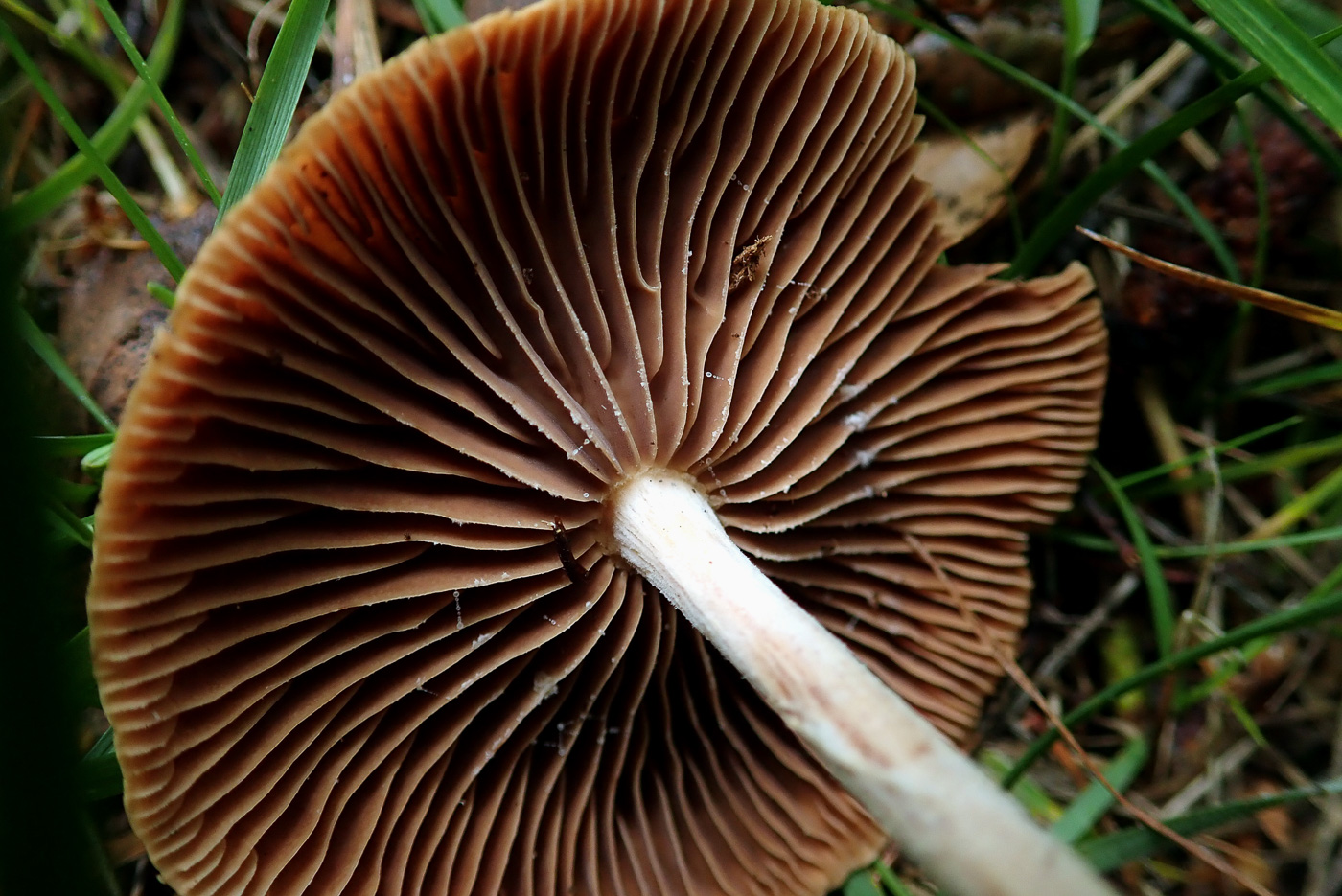 |
September 30th Gymnopus peronatus (Wood Woollyfoot)
Penny Cullington found this common species (previously in the genus Collybia) in grassy litter under mixed trees at Turville Heath. The brown caps up to about 4 cm across look like those of many other woodland mushrooms and it's not until the underside is revealed that one can recognise it. The first feature to note is the lower stem which is finely hairy and usually has debris adhering to the base, hence its common name. Note also the characteristic shape and colour of the gills.
|
September 29th 2020
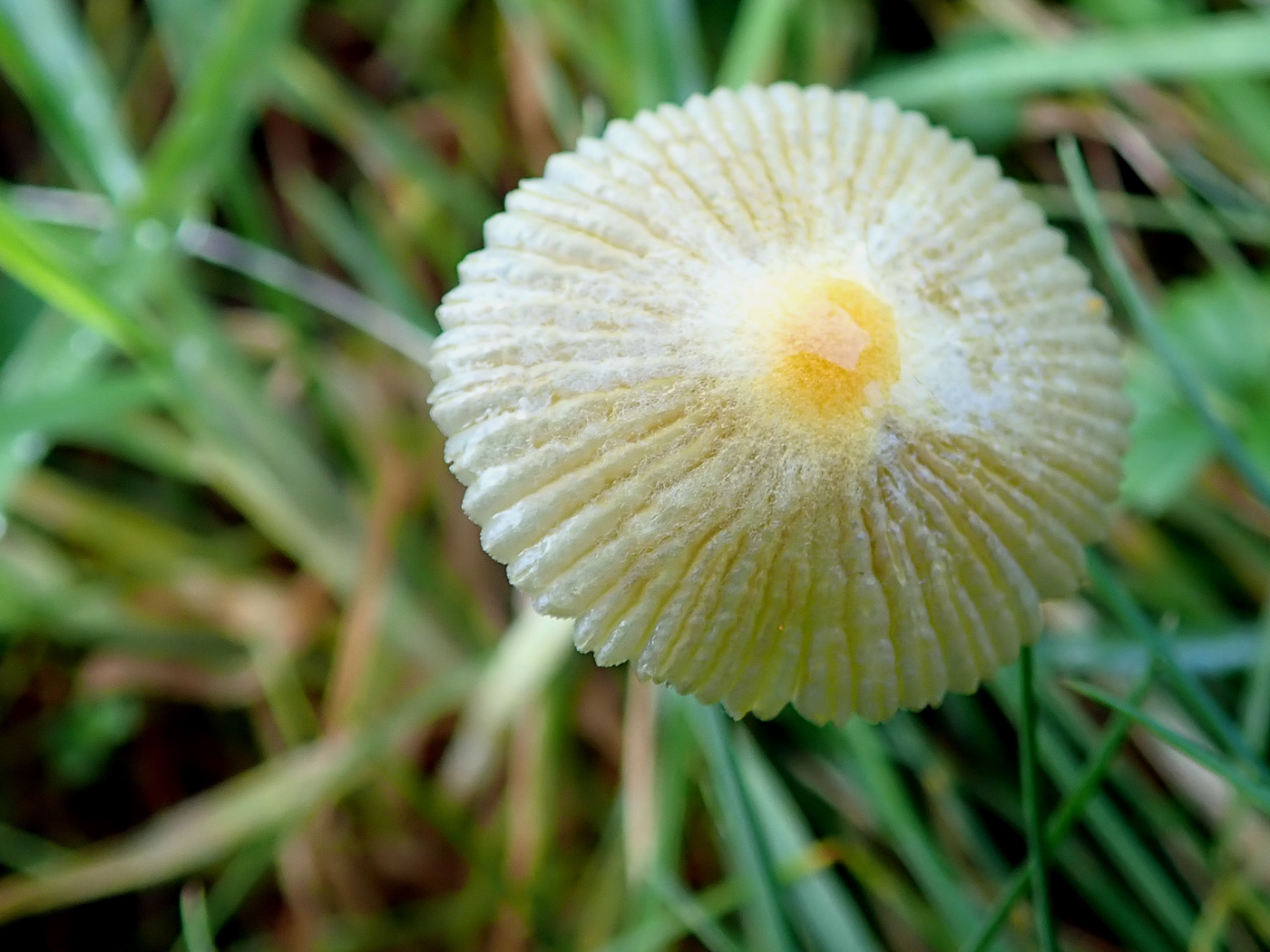
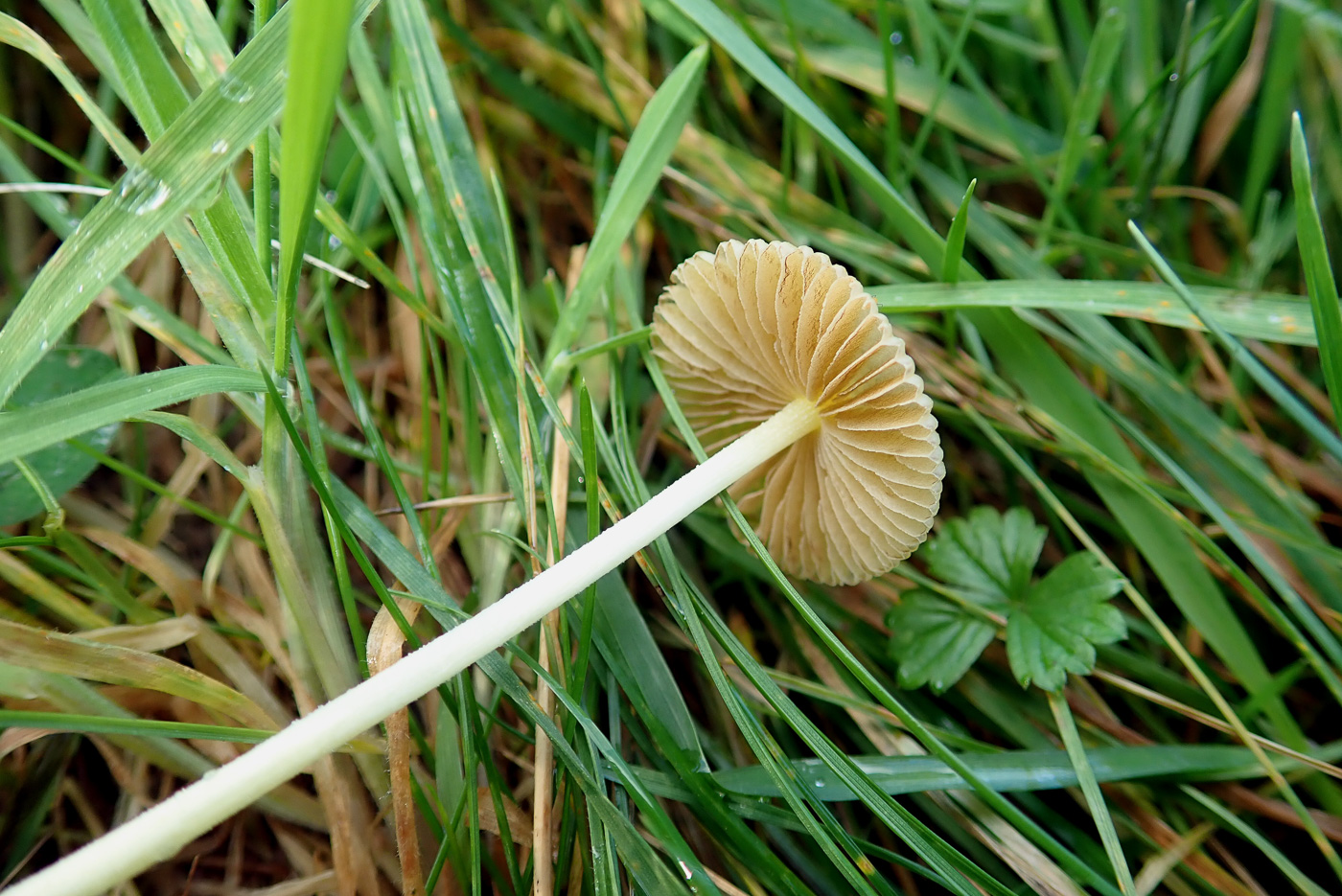
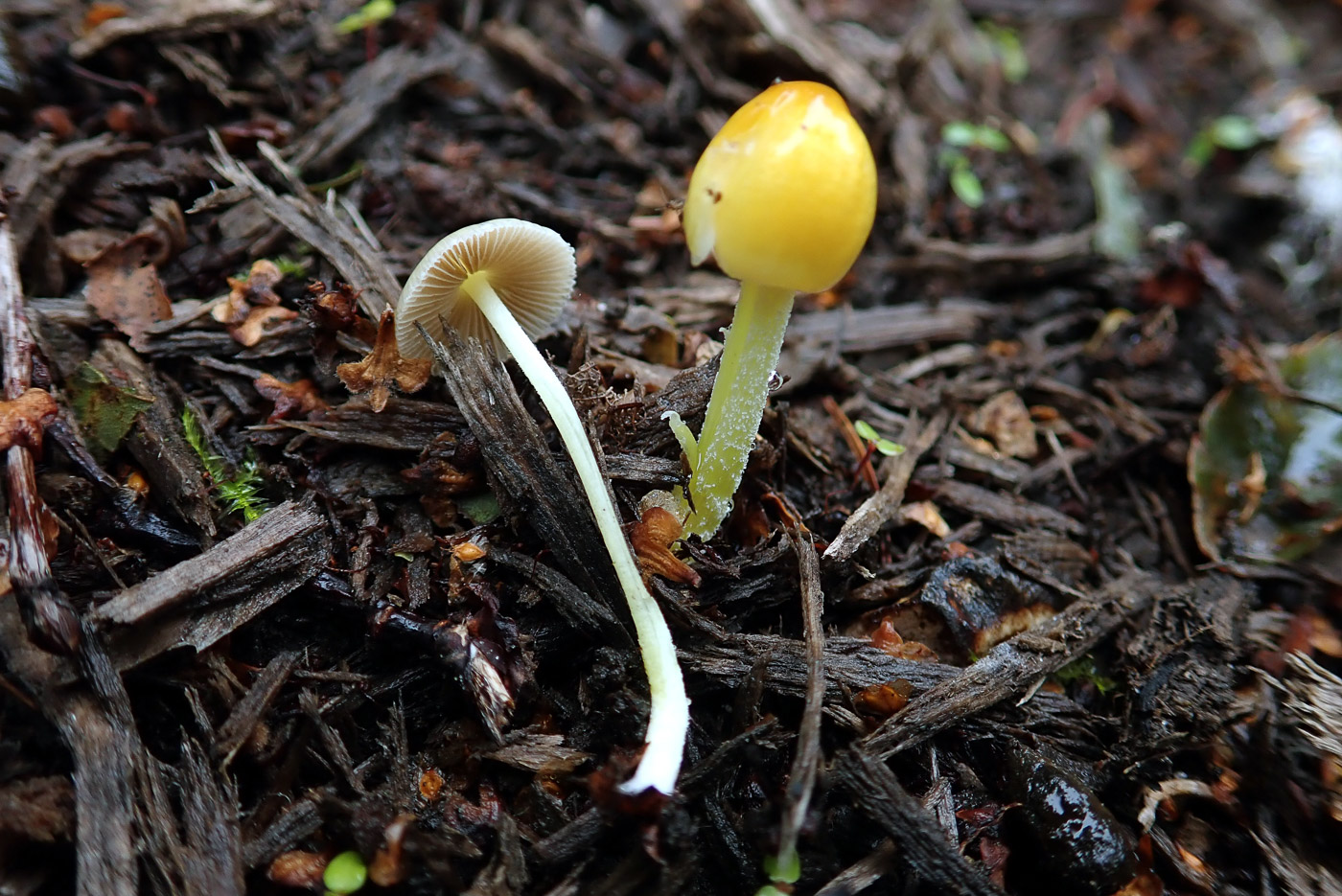
|
September 29th Bolbitius titubans (Yellow Fieldcap)
Penny Cullington found this small grassland species (previously B. vitellinus) in a meadow at Rushbeds Wood. It is common in grass, also sometimes in woodchips, though is a delicate species and rather shortlived. Very thin fleshed and not unlike one of the Parasola group of Inkcaps in form, when young the cap is entirely yolk yellow then as it expands develops the typical grooves seen here on this singleton, retaining the yellow only at the centre. As luck would have it, Penny found young specimens the following day at Turville Heath growing on woodchip, which demonstrate just how strikingly yellow the species starts out.
|
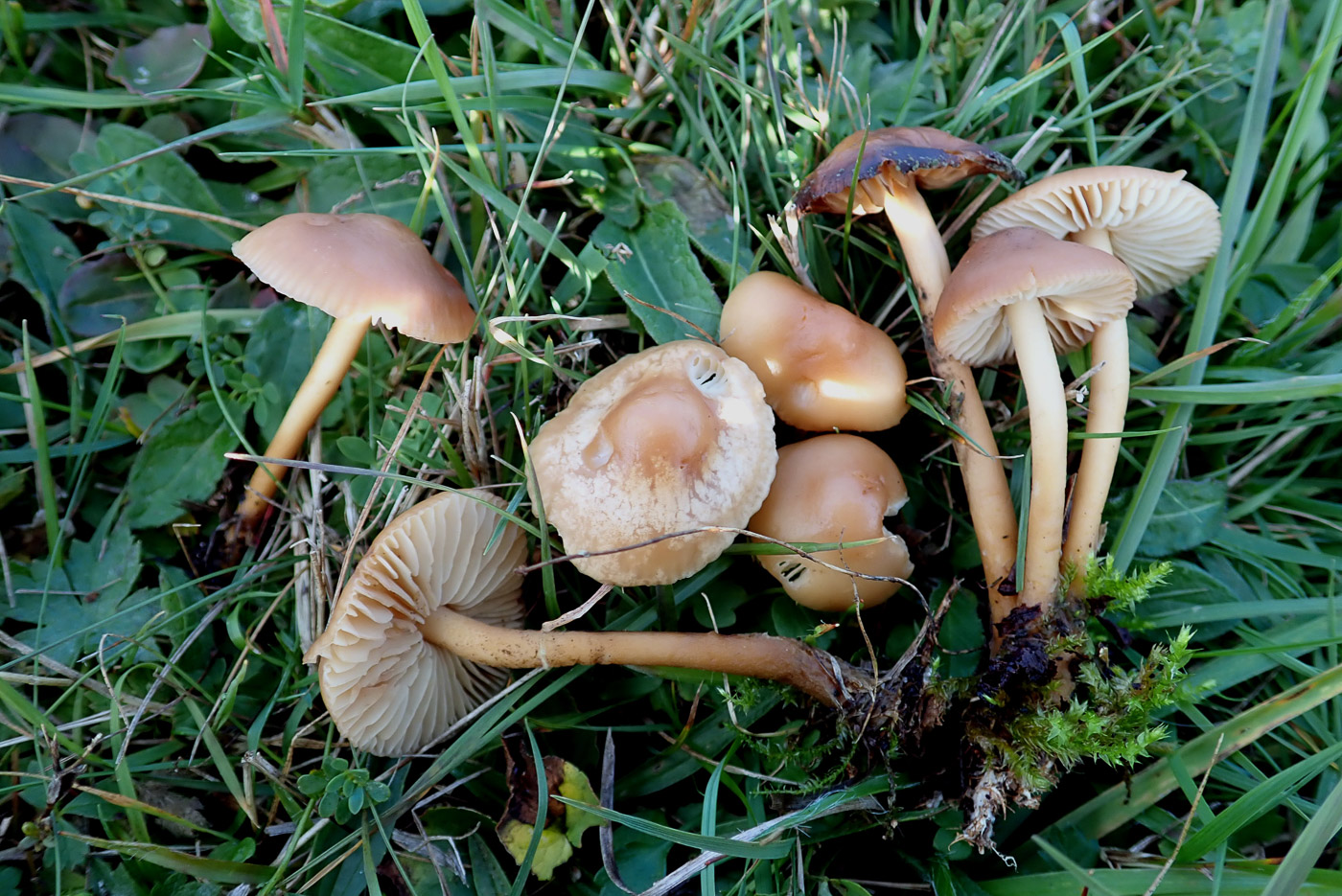 |
September 29th Marasmius oreades (Fairy Ring Champignon)
A very common grassland species, this was in a meadow at Rushbeds Wood, found by Penny Cullington. As the common name suggests, it can often be found in rings on lawns in large numbers - the rings gradually increasing in size year by year, though this is by no means the only mushroom to do this. Note the rather widely spaced gills and flexible texture. The cap fades as it dries but it can be revived by soaking in water - a unique feature of the genus.
|
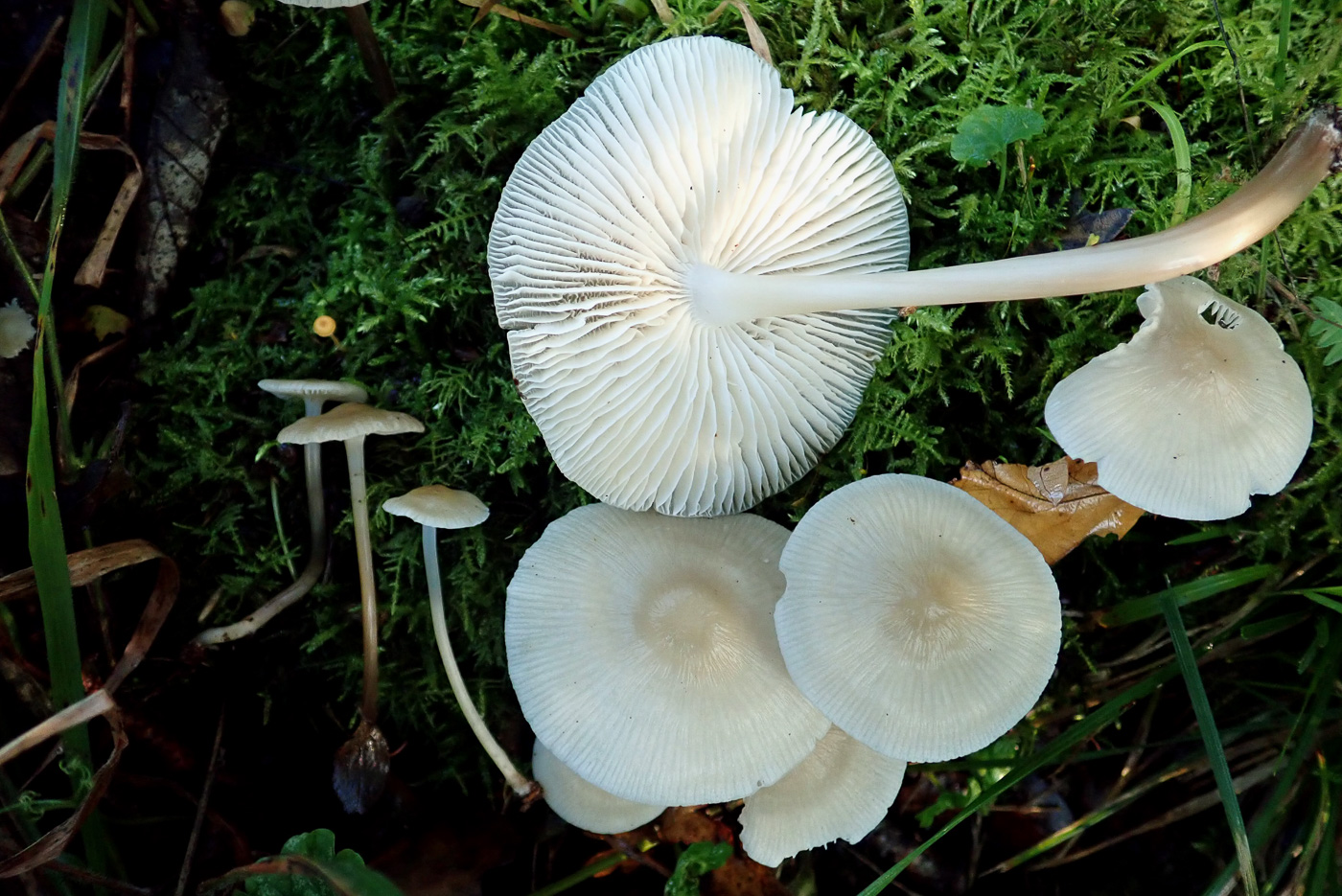
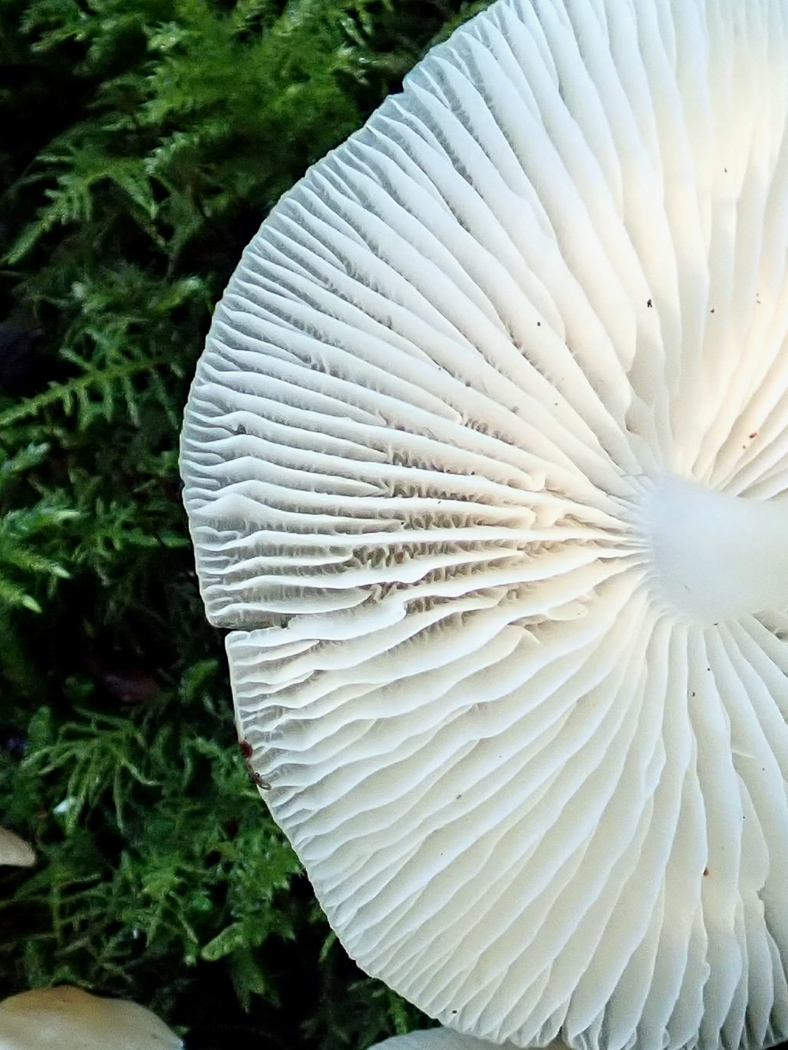
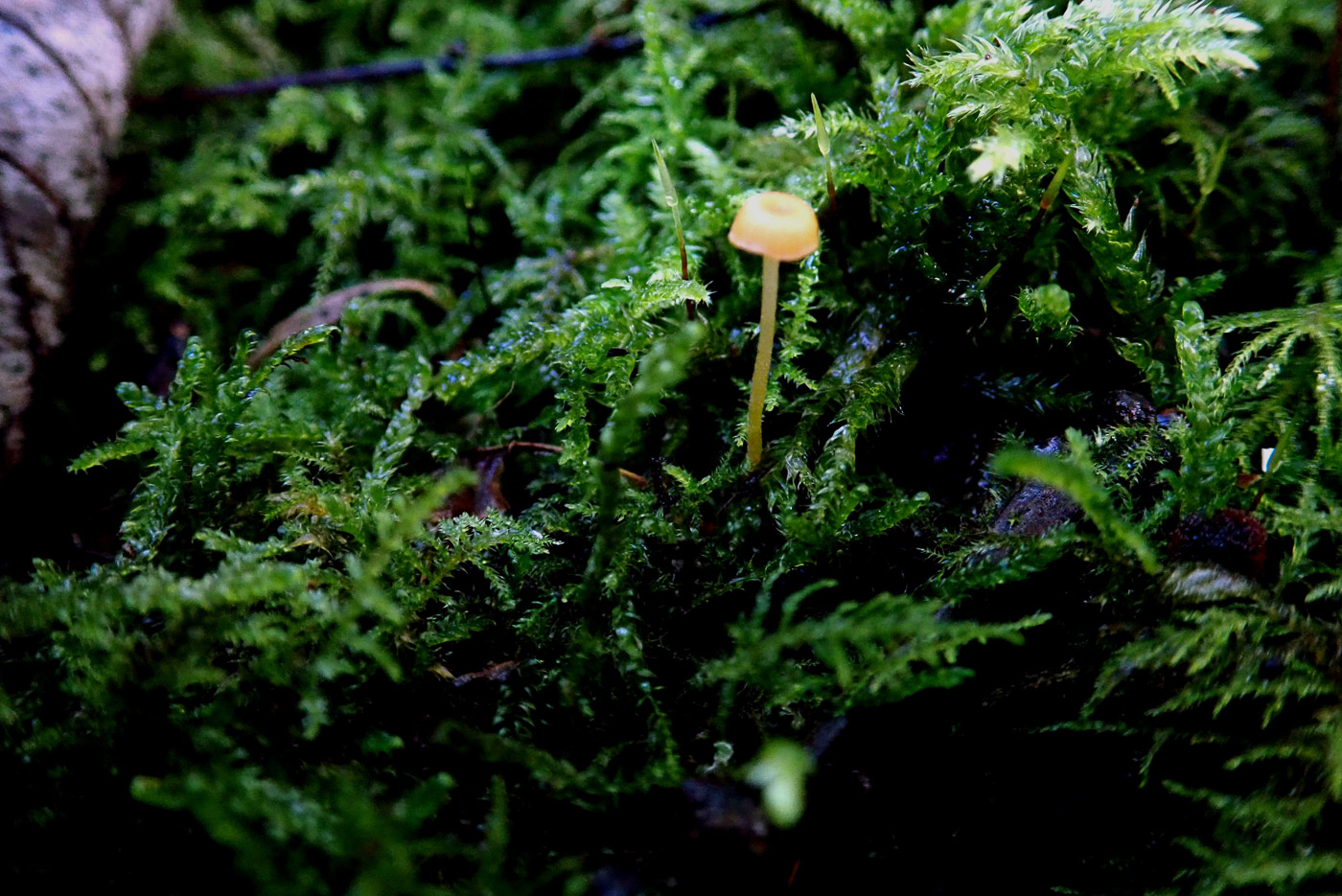 |
September 29th Mycena galericulata and Mycena acicula (Common Bonnet and Orange Bonnet)
Penny Cullington found these two species of Bonnet together on a mossy log in Rushbeds Wood - one of the largest Bonnets alongside one of the smallest! M. galericulata is very common on fallen deciduous wood and when still small (see the three LH specimens) looks like many other fallen wood inhabiting Bonnet species. It becomes easier to recognise when it gets larger (with caps up to 6 cm or more across) just because of its size, but a key feature to note is the interconnecting ridges between the gills (hard to see when young but increasingly obvious as it grows - see second photo). Take another look at the first photo where M. acicula is just visible as an orange speck above the far LH. specimen!The cap never exceeds 6 mm (the third photo being a close-up of the same specimen). Much more detailed photos of this species can be seen dated Sept 20. There are many other tiny Bonnets but this is the only one with a bright orange cap and yellow stem. It's quite common though easily missed and favours woody mossy litter.
|
September 28th 2020
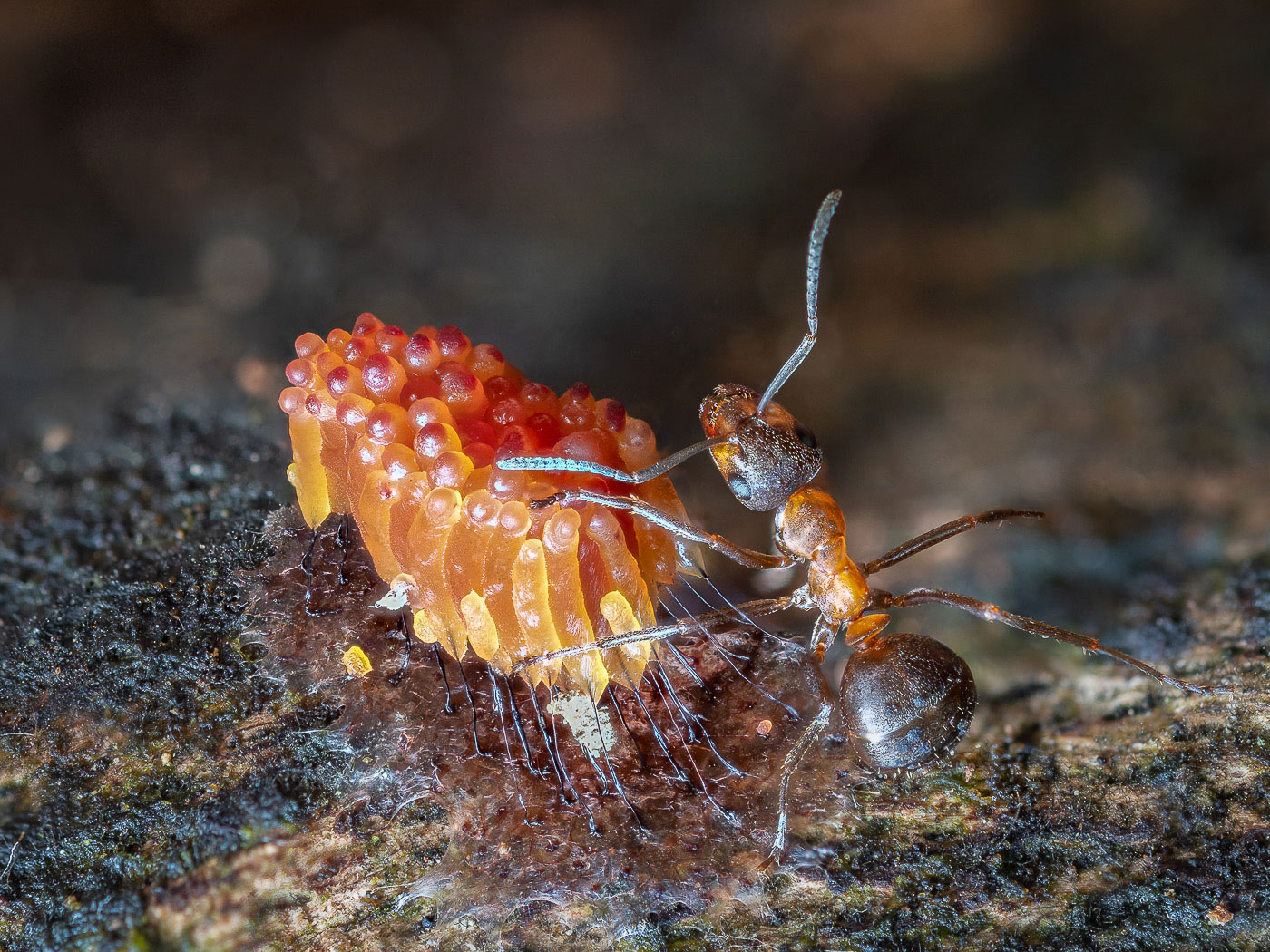 |
September 28th Stemonitis sp. (a species of Slime Mould)
Gill Ferguson took this delightful photo in Burnham Beeches where Wood Ants abound. This one was clearly about to devour the Stemonitis which is at a transitional stage between the slimy Plasmodium stage and the mature dry brown fluffy stage. It is only at this later stage that the genus can be identified to species, but at least one can clearly recognise the genus by the general shape with the long thin dark stalks and suasage-like tops.
|
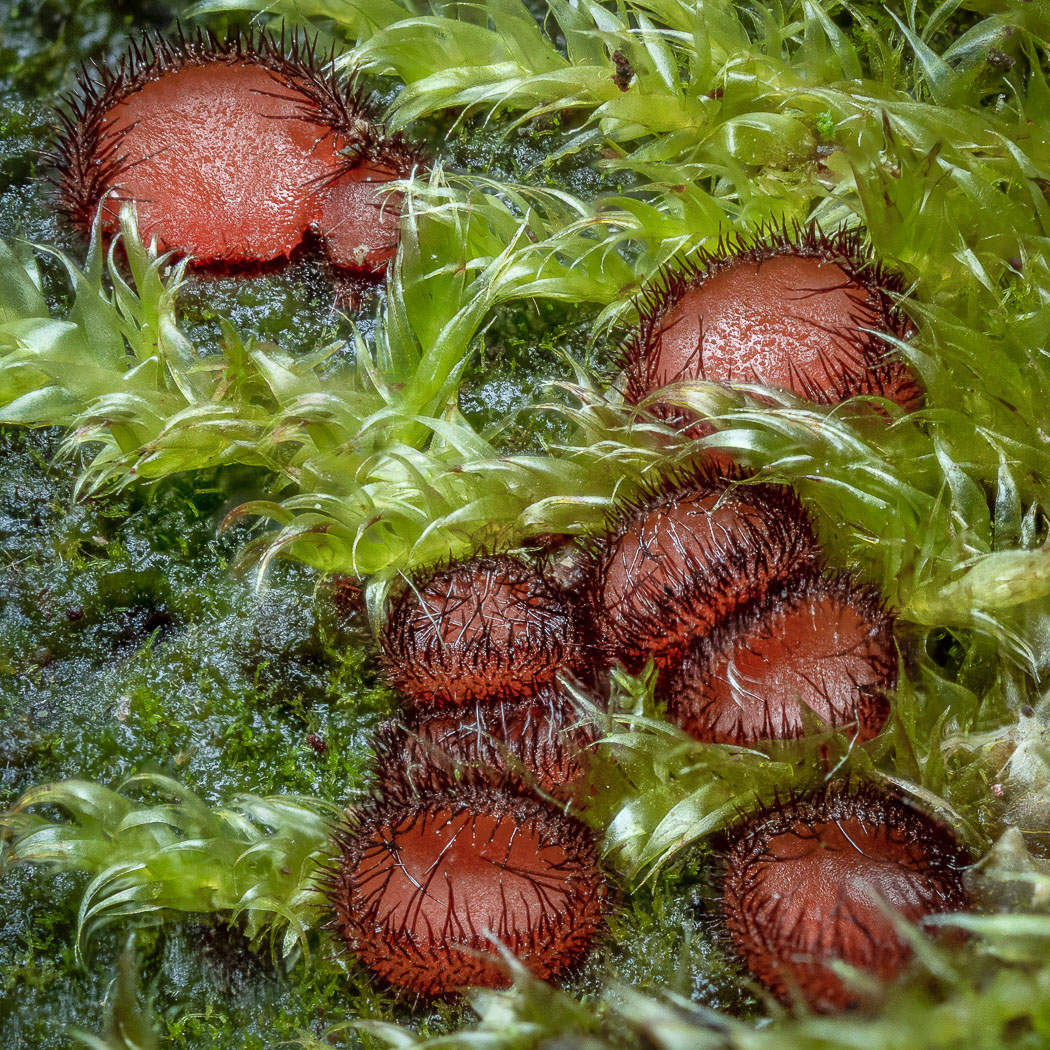 |
September 28th Scutellinia scutellata (Common Eyelash)
We do have this species already, dated Oct 01, but Gill Ferguson's beautiful close-up photo is well worth including separately. It was found on rotting wood in Burnham Beeches. Not identified with a scope here, but the length of the hairs leaves no doubt that it must be this particular species of Eyelash - others have much shorter hairs.
|
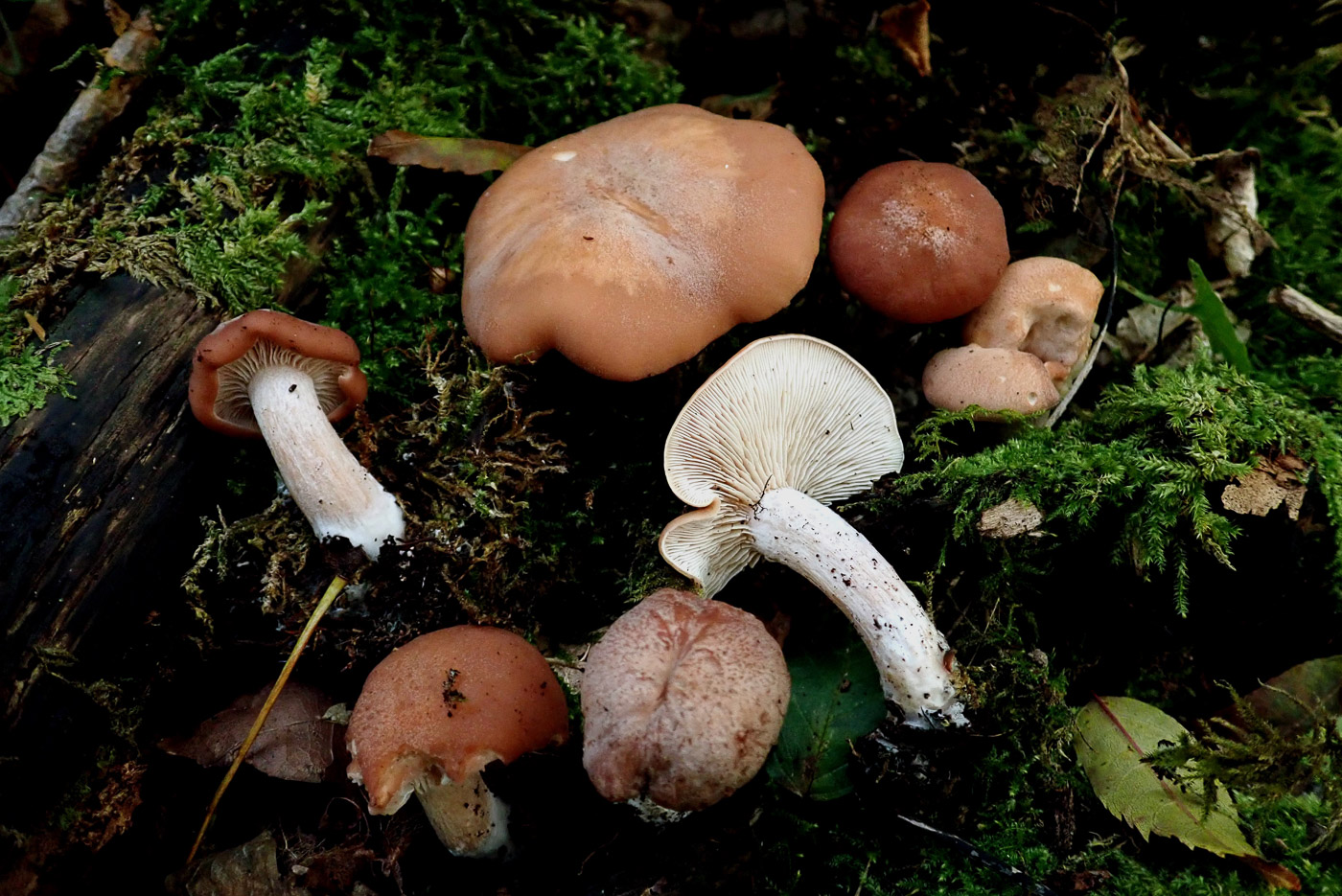
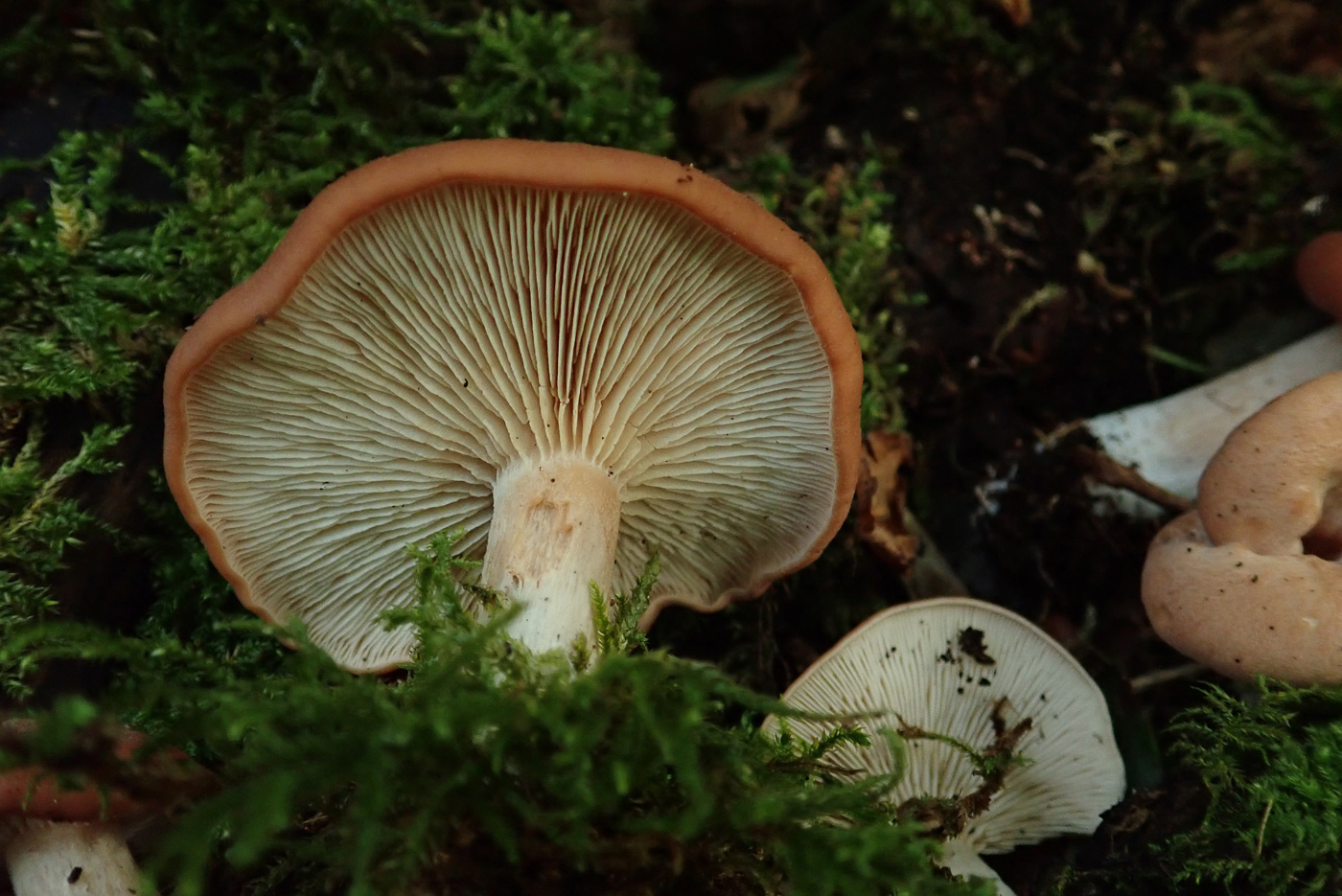
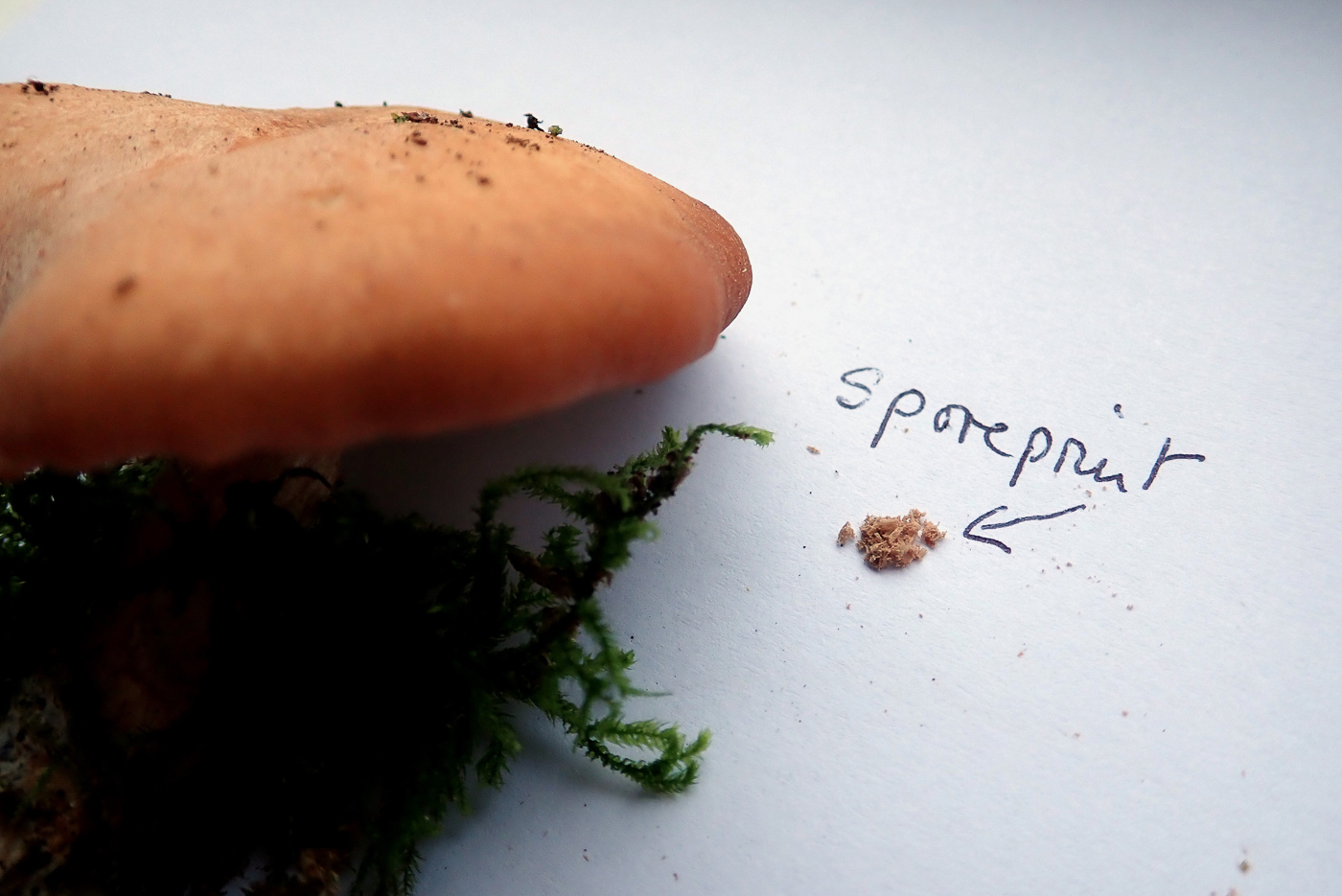 |
September 28th Rhodocybe fumanellii (a species of Pinkgill new to Britain)
Penny C. found this species, only first described in 2018 from Italy, growing on a pile of Ash branches in Rushbeds Wood. She knew it was something unusual because it didn't key out as any of the known Rhodocybe species, so took the opportunity to have a sample sequenced and both its DNA sequence and her description matched that described for this species. Caps can get to 7 cms across or more and are reddish rusty brown, fading as they dry out but leaving a dark zone around the margin, gills are crowded and pale cream to pinkish with many lamellules (part gills which don't reach the margin), stems are concolorous with gills and have a mesh of mycelium at the base with attached debris. It has a sweetish fruity smell. As far as can be ascertained this is the second known world collection.
|
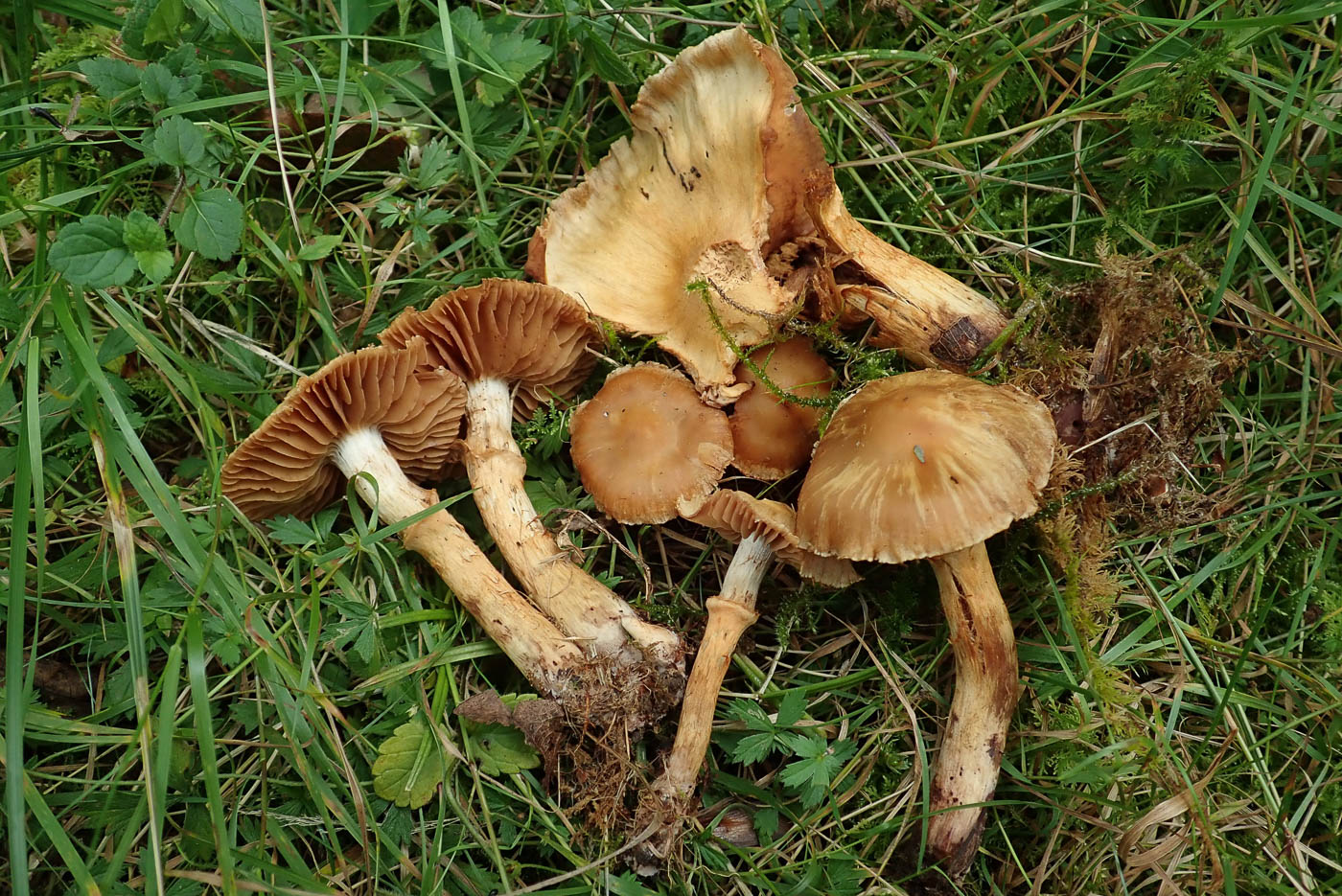
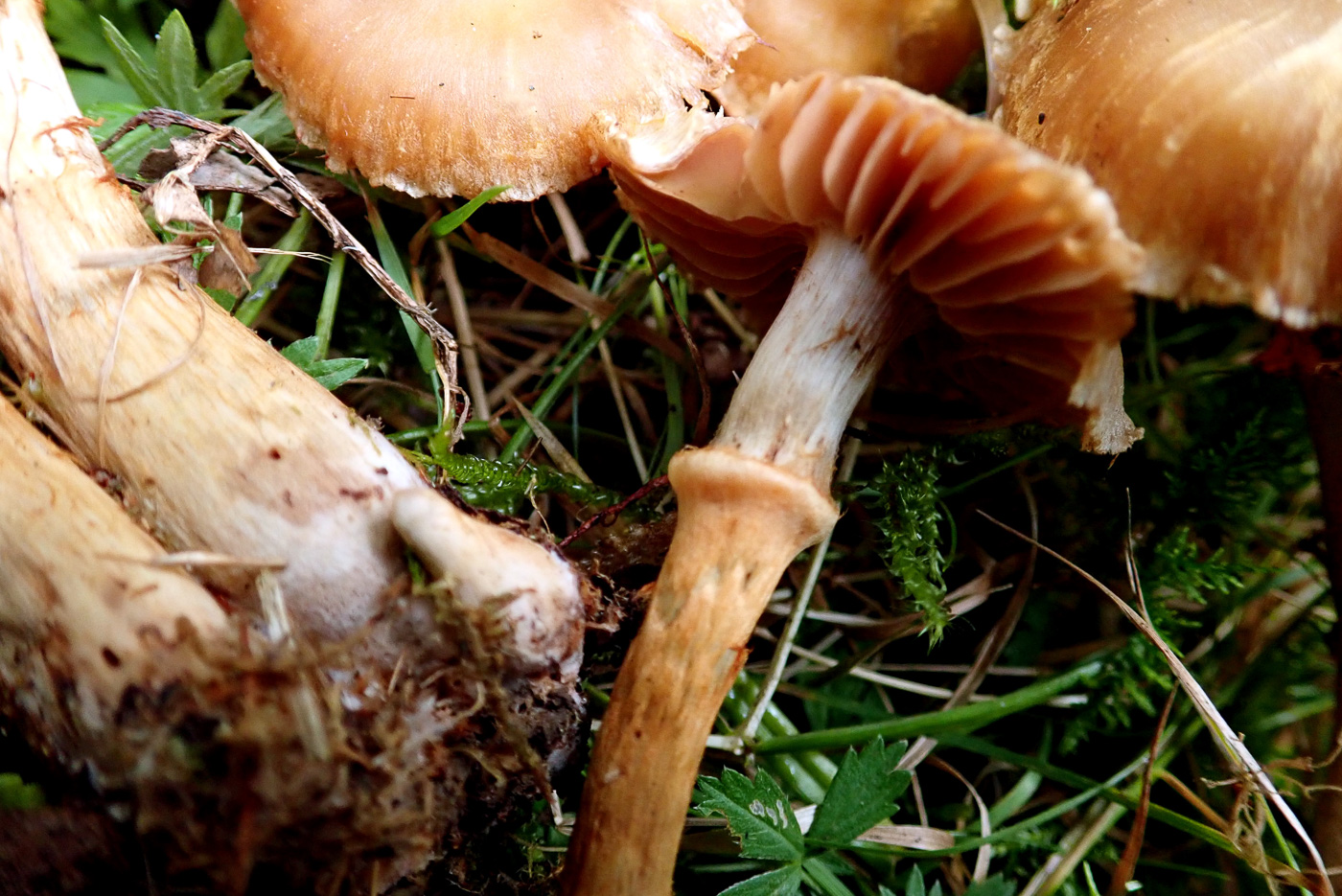 |
September 28th Cortinarius hinnuleoarmillatus (A Webcap with no common name)
Penny Cullington found this collection growing in a grassy path edge near Hazel and Willow in Rushbeds Wood. See comments for C. lacustris (a very similar species, dated Sept 26th) for some background information about the Telamonia section of this genus. Comparing the photos here with that of C. lacustris, note the different rings on the stem: white and thin in C. lacustris but notably large and orange in this new species with the orange continuing down the stem below the ring - an almost unique feature. DNA testing has now confirmed this determination so both this species and Rhodocybe fumanellii, found within a few yards of each other on the same day, can now officially be included on the British list. What a day!
|
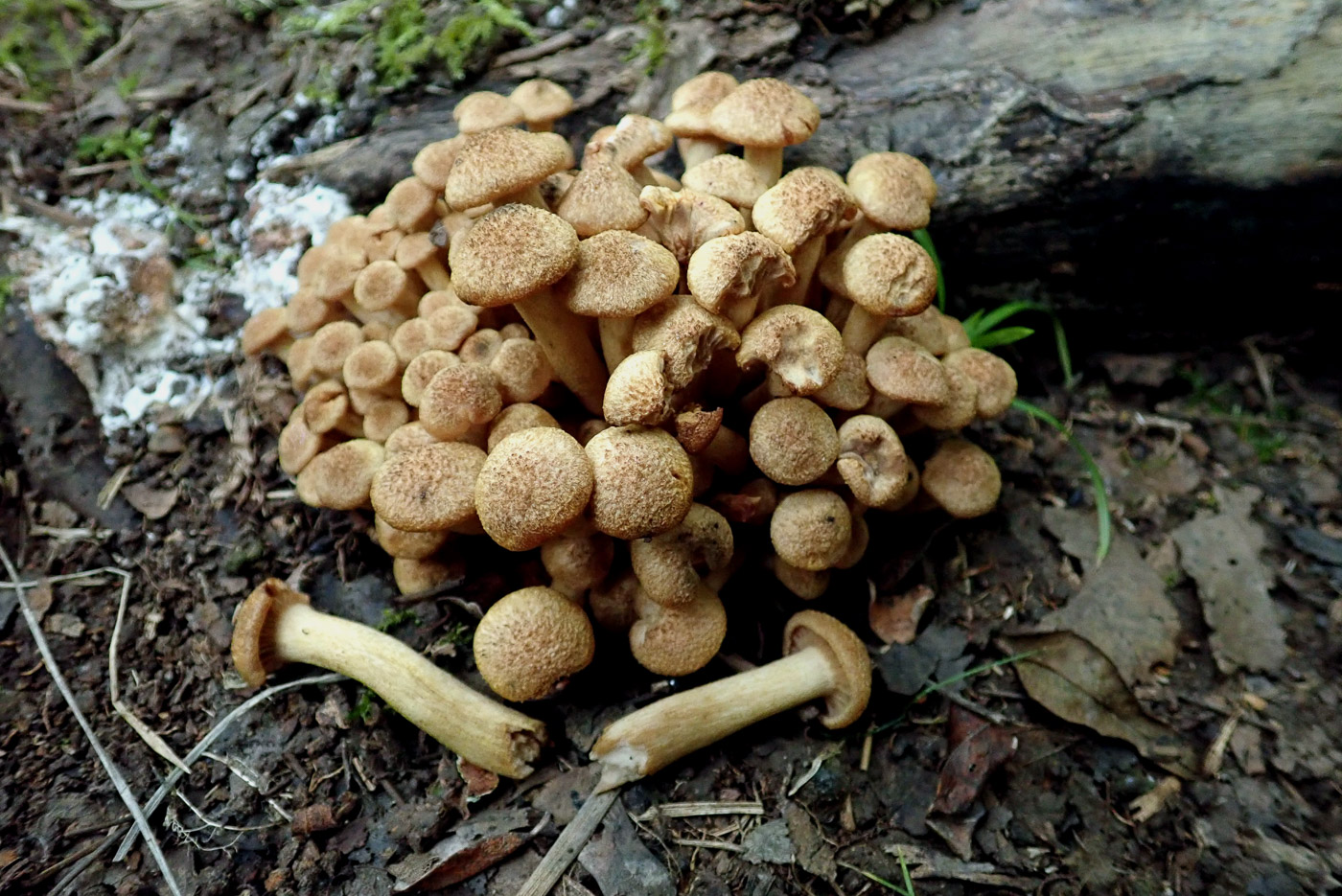 |
September 28th Armillaria tabescens (Ringless Honey Fungus)
Penny Cullington found several tight clusters of this unusual species just beginning to emerge, apparently in soil but probably on Oak roots, at Rushbeds Wood. Like a small A. mellea (see photo dated Sept 27th) having a cylindrical stem, it differs from all other woodland Armillaria species by the complete absence of a ring on the stem
|
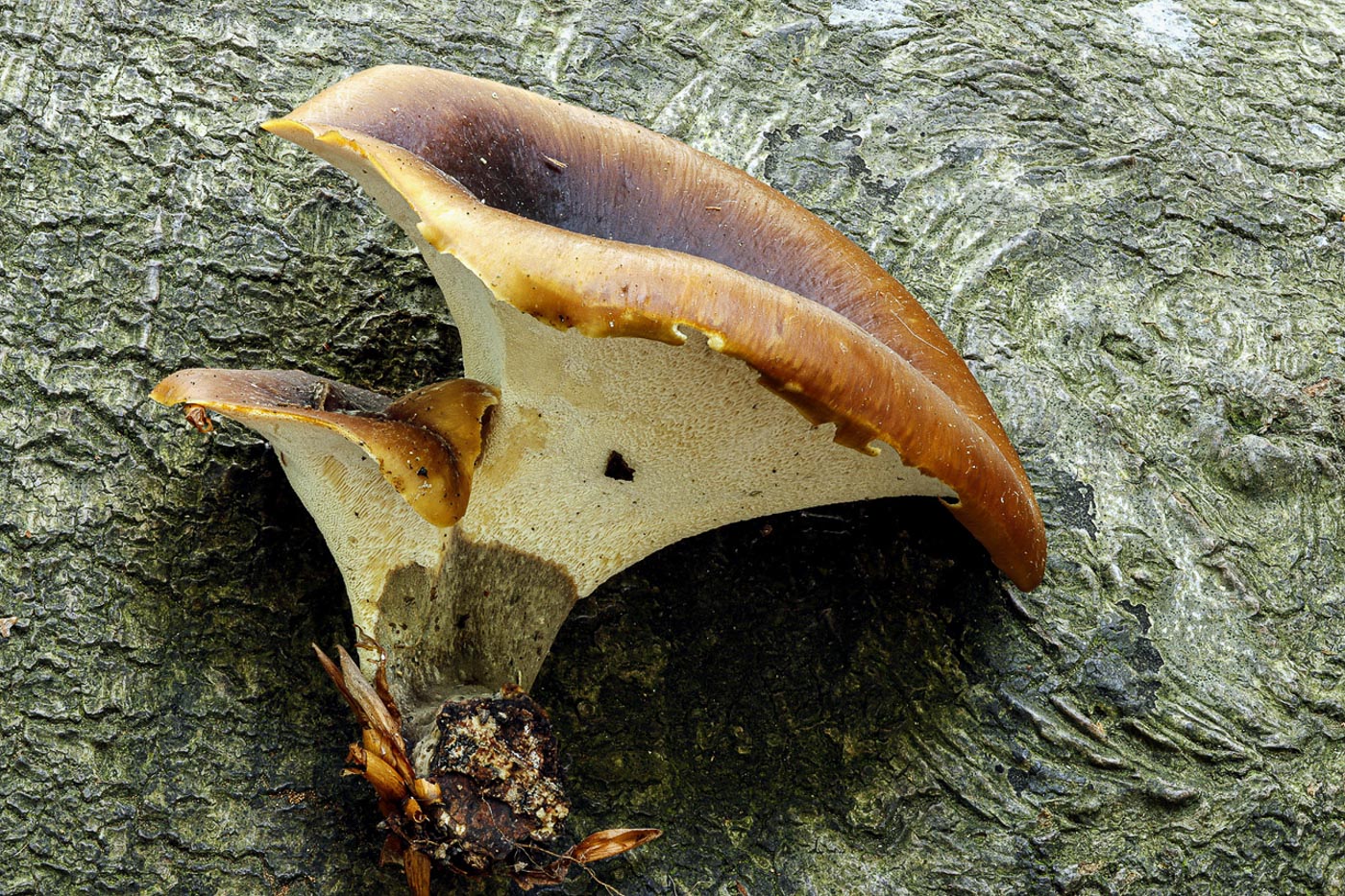
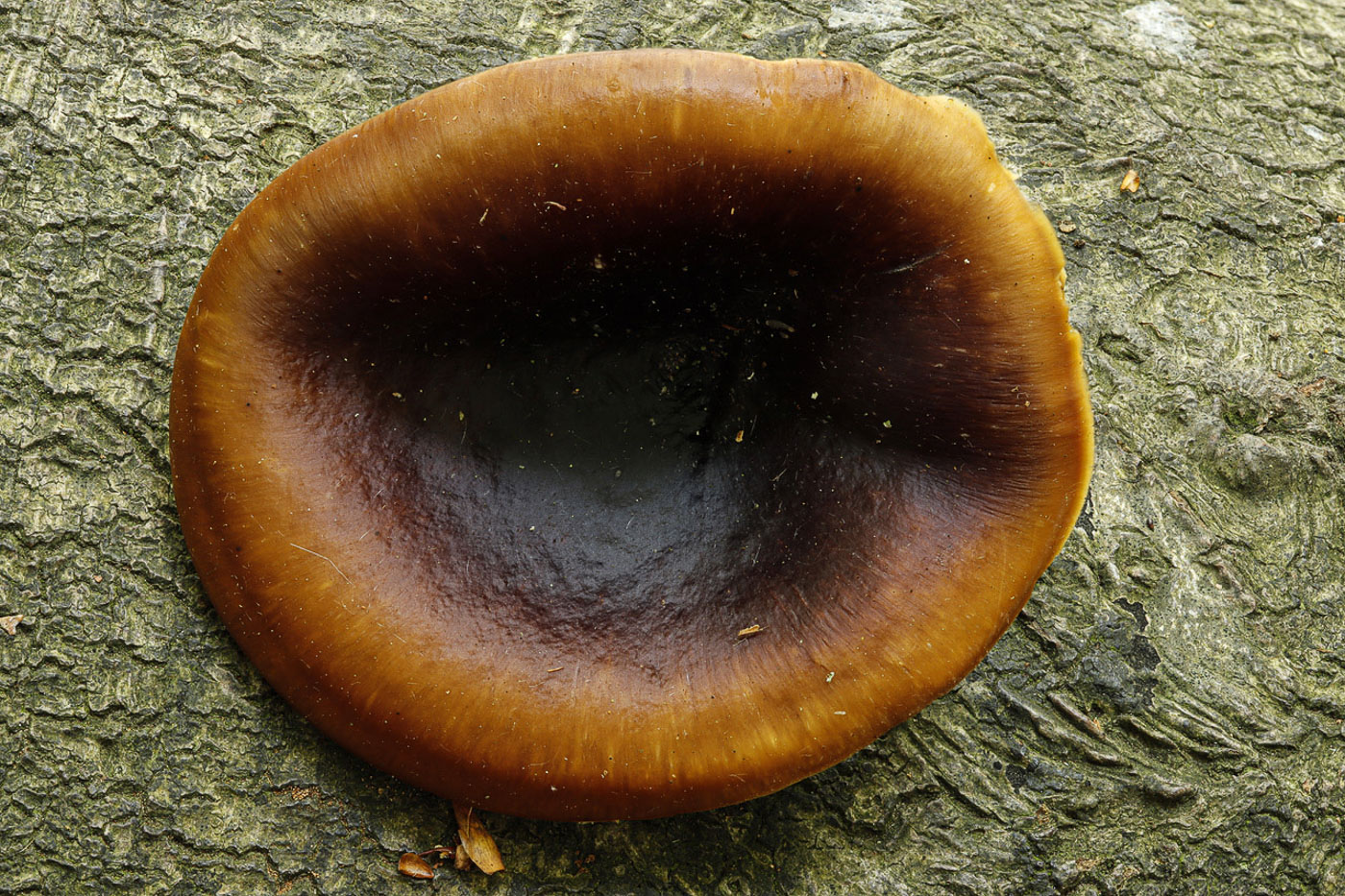
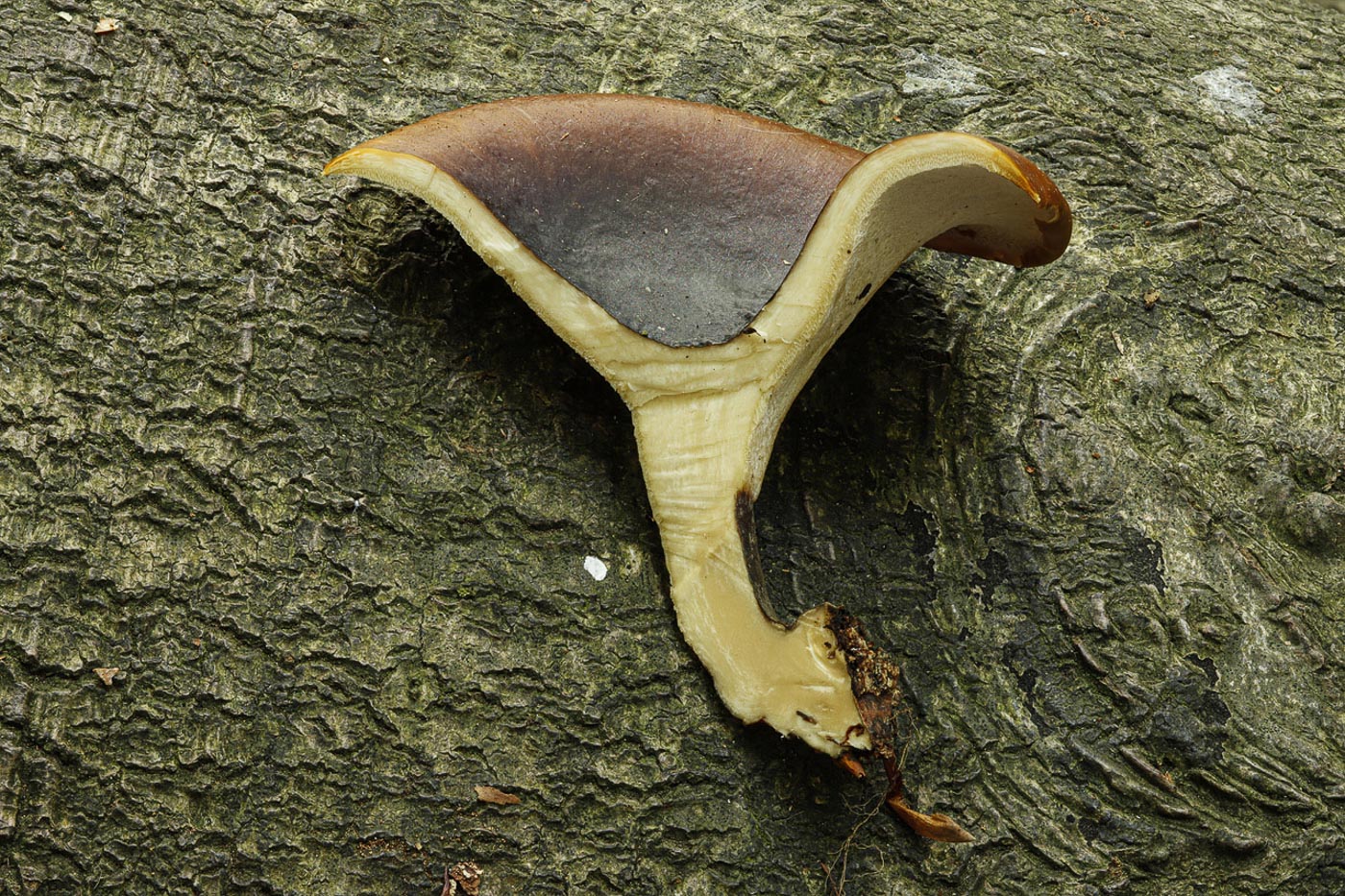 |
September 28th Polyporus durus (Bay Polypore)
This singleton Polypore (previously P. badius) was found by Paul Goby in Bradenham Wood on fallen Beech. All our Polypore species grow on fallen wood and this is the largest of those having smooth caps (sometimes up to 25 cm across or more), though probably not the commonest. Look for the shiny smooth bay brown funnel-shaped cap with tiny whitish pores beneath to distinguish it from others. Note also that sometimes the stem can be eccentric (off centre) or very short.
|
September 27th 2020
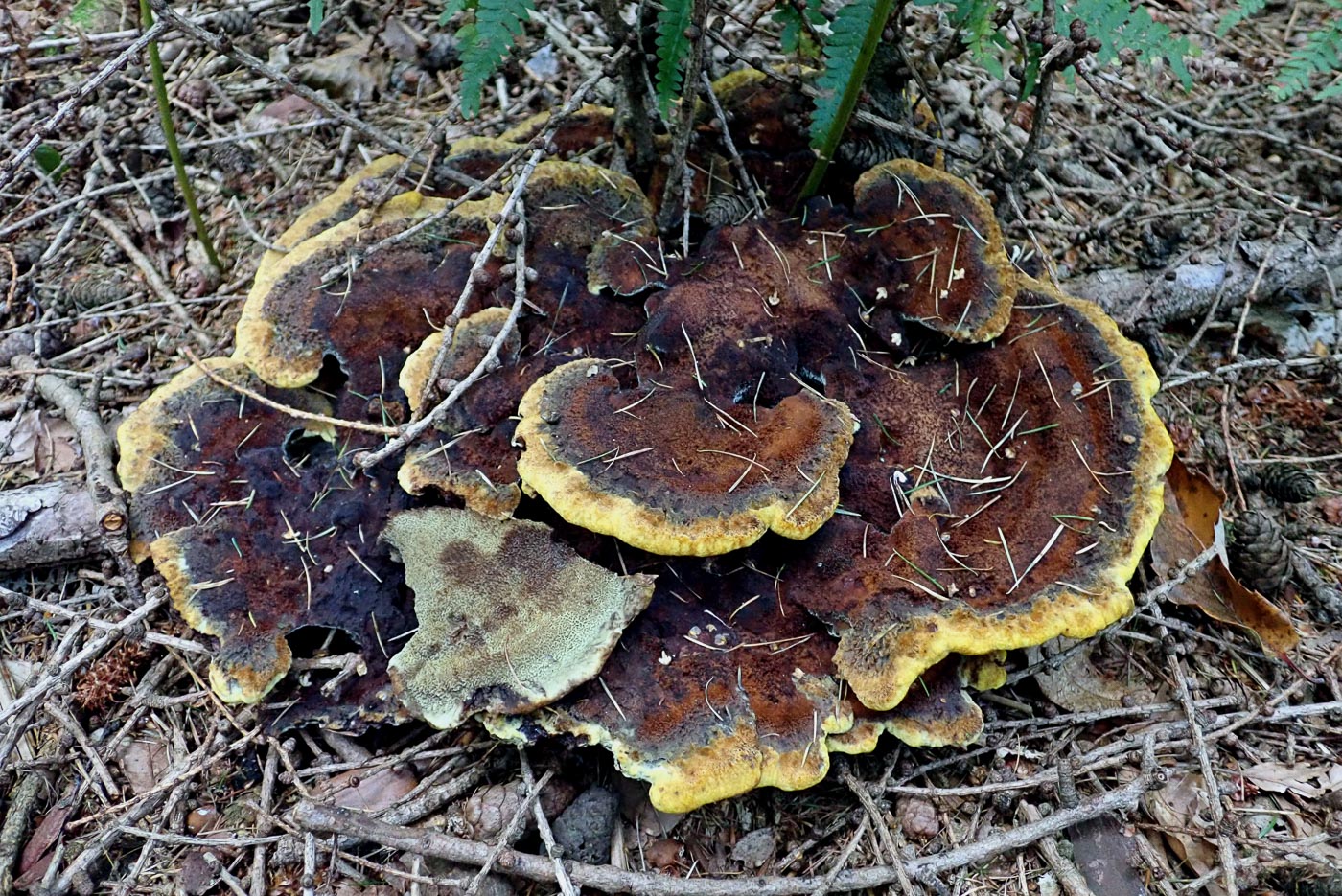 |
September 27th Phaeolus schweinitzii (Dyer's Mazegill)
This unusual-looking brackets was found by Penny Cullington at Pullingshill Wood at the base of a Larch stump. Not rare given its conifer host, most commonly Pine, it has softish texture and the dark centre with paler zones ending up with a yellow margin make it unmistakable. Often dinner plate size, the pores underneath have a greenish olive glint and turn dirty brown when pressed (seen at the bottom left of the photo).
|

 |
September 27th Hydnum rufescens (Terracotta Hedgehog)
This rather emaciated collection was growing in vegetation in Mousells Wood, found by Penny Cullington. Almost as common as the paler capped Wood Hedgehog (compare with photo dated Sept 06), from above this might be mistaken for a number of gilled fungi, but turning one over reveals all. Note that not just the cap is a darker colour than H. repandum but also the characteristic spines below (see second photo). There are other much rarer similarly coloured Hydnum species recently described which have differently shaped spores. 
|
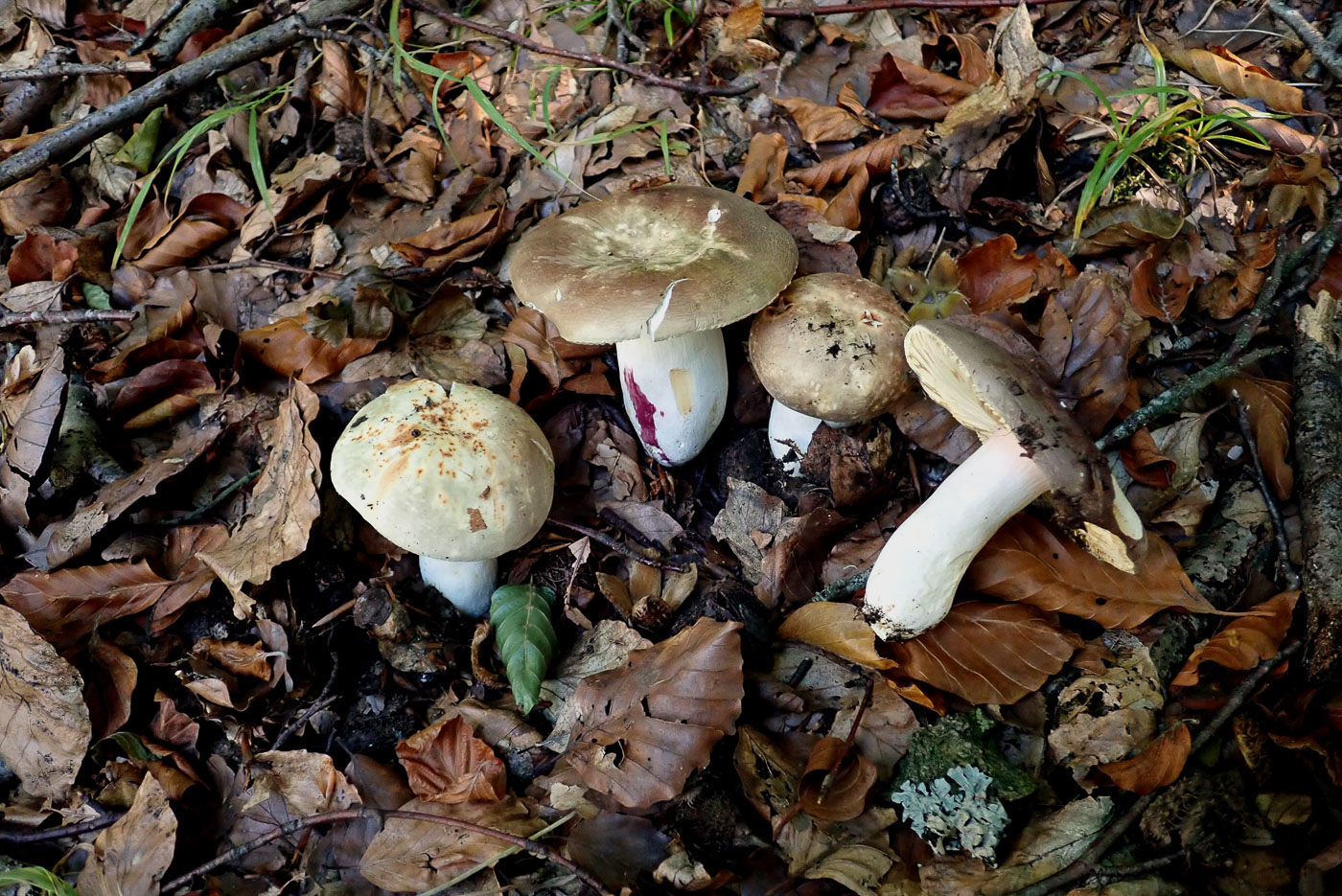
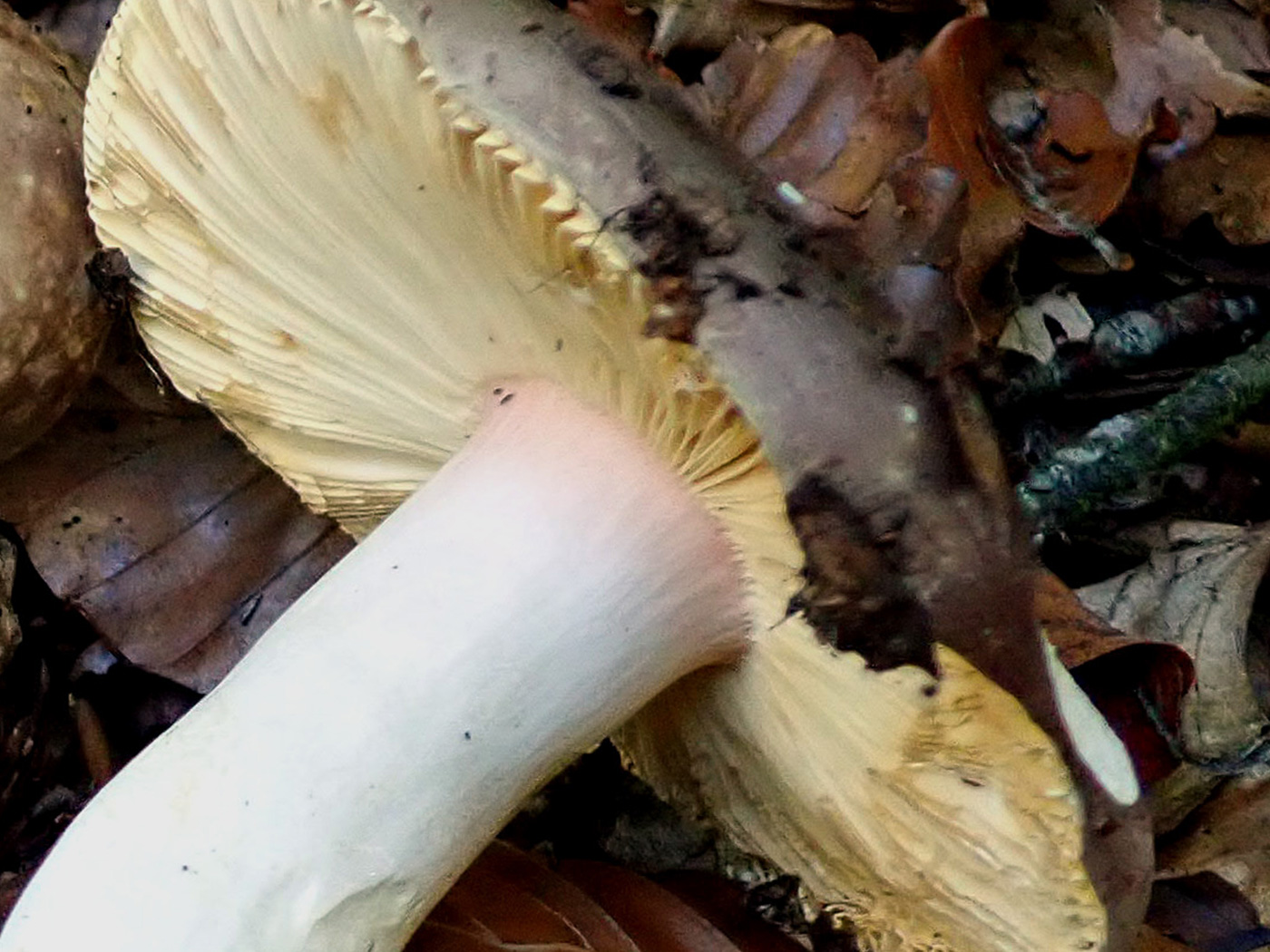 |
September 27th Russula olivacea (Olive Brittlegill)
This occasional species was quite common under Beech (with which it is host specific) in Mousells Wood, found by Penny Cullington. Superficially similar to others in this large and tricky genus, it is a big firm species though the cap colour is very variable and often much more vinaceous pink than shown here. The give-away character in the field is the subtle pink flush right at the top of the stem (see second photo). Confirmation is the salmon reaction when the stem is rubbed with a crystal of Ferrous Sulphate and the almost unique blackcurrant stain with a drop of Phenol (other Brittlegills turn dirty brown). Both reactions are visible in the photo.
|
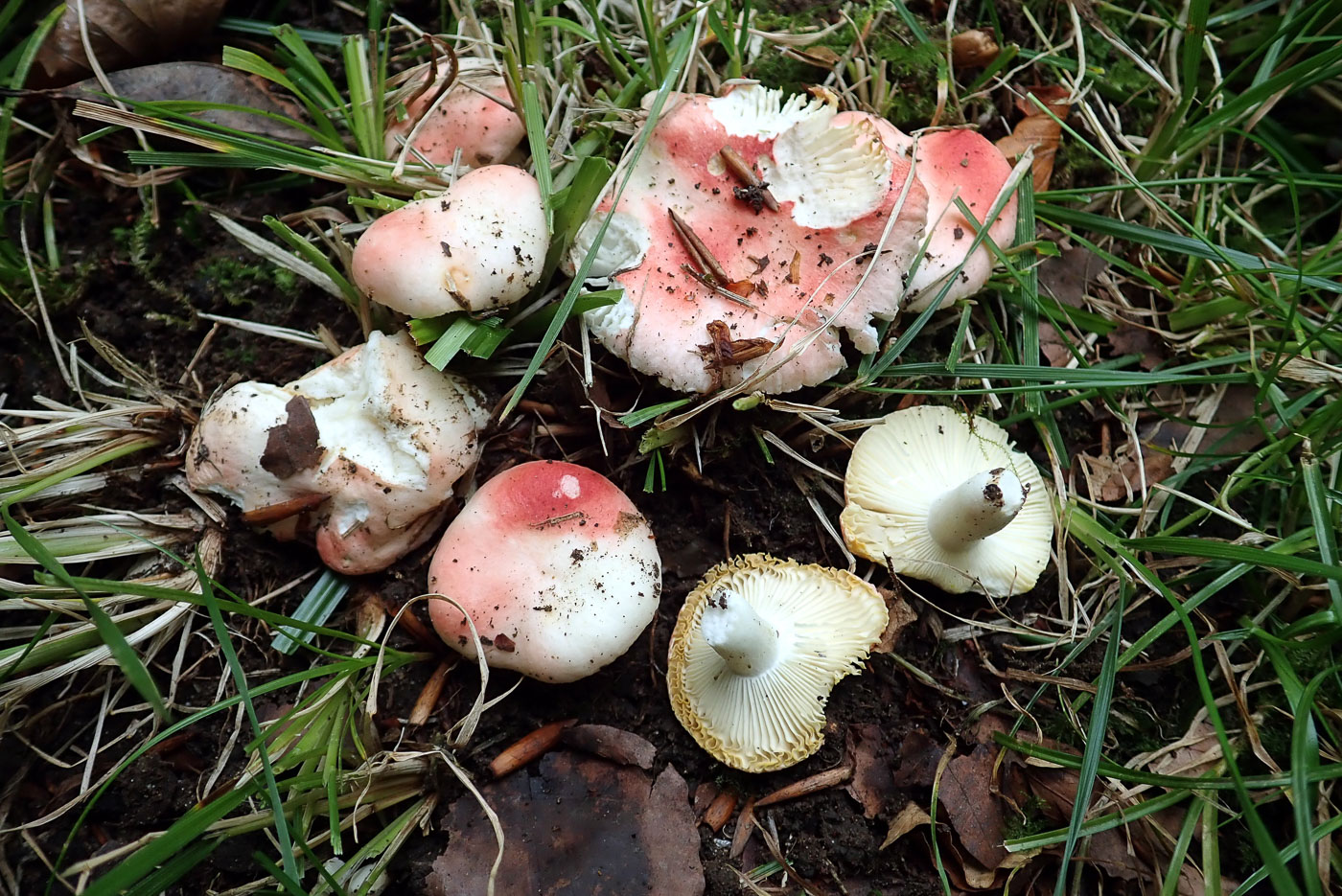
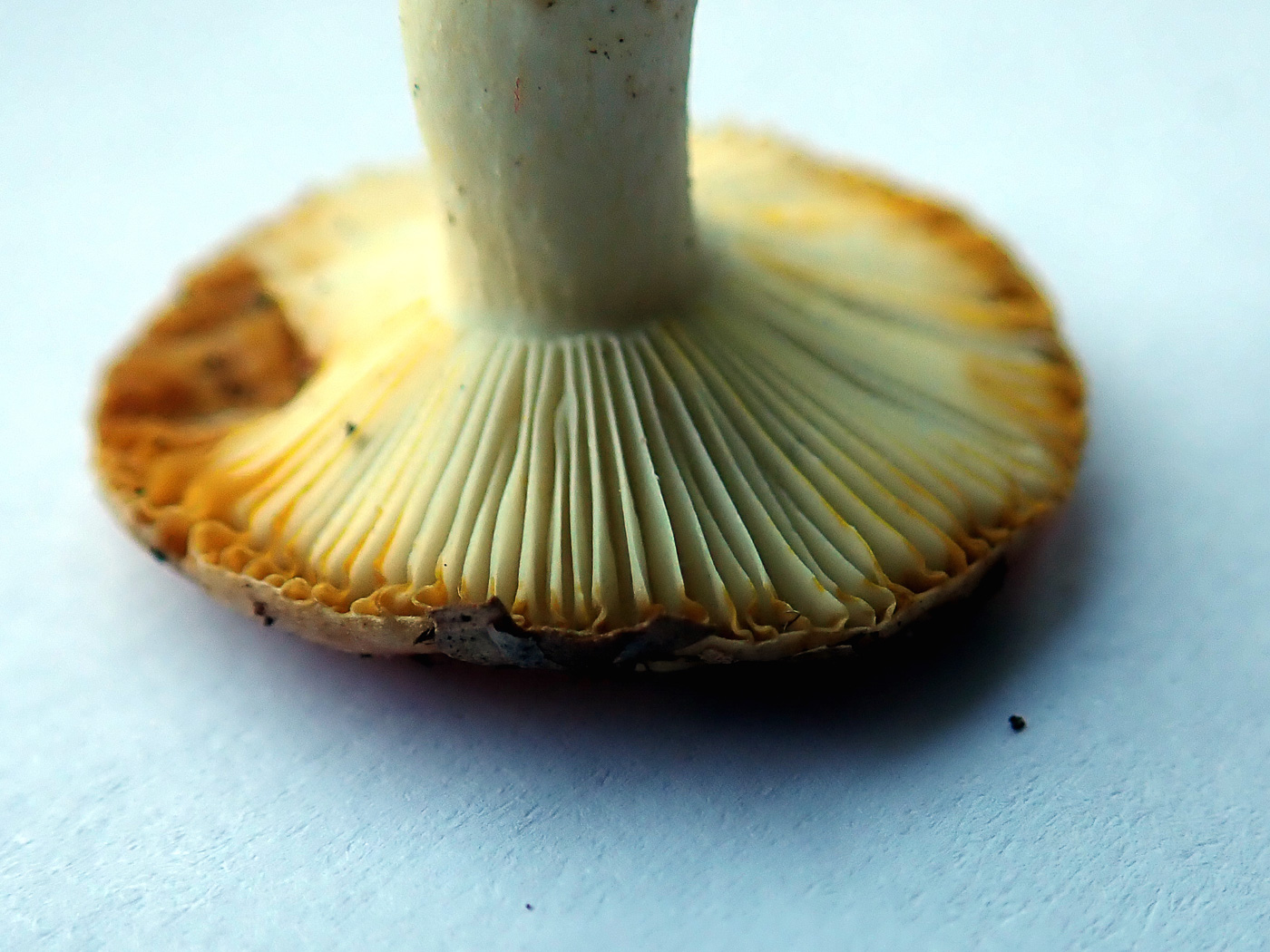 |
September 27th Russula luteotacta (a Brittlegill with no common name)
An uncommon Brittlegill, this collection was found by Penny Cullington in a damp grassy track near Beech in Mousells Wood. It's odd that there is no common name for this species but the Latin name describes it perfectly: yellow when touched. The cap colour is variable but is a combination of pink and cream, also the cuticle (cap skin) hardly peels at all. But the unique feature is often not revealed for several hours after collection: any damaged parts turn brassy yellow (see second photo). So if you suspect you have this species, scratch the stem or break the gills, then place in a pot and forget about it till the next day!
|
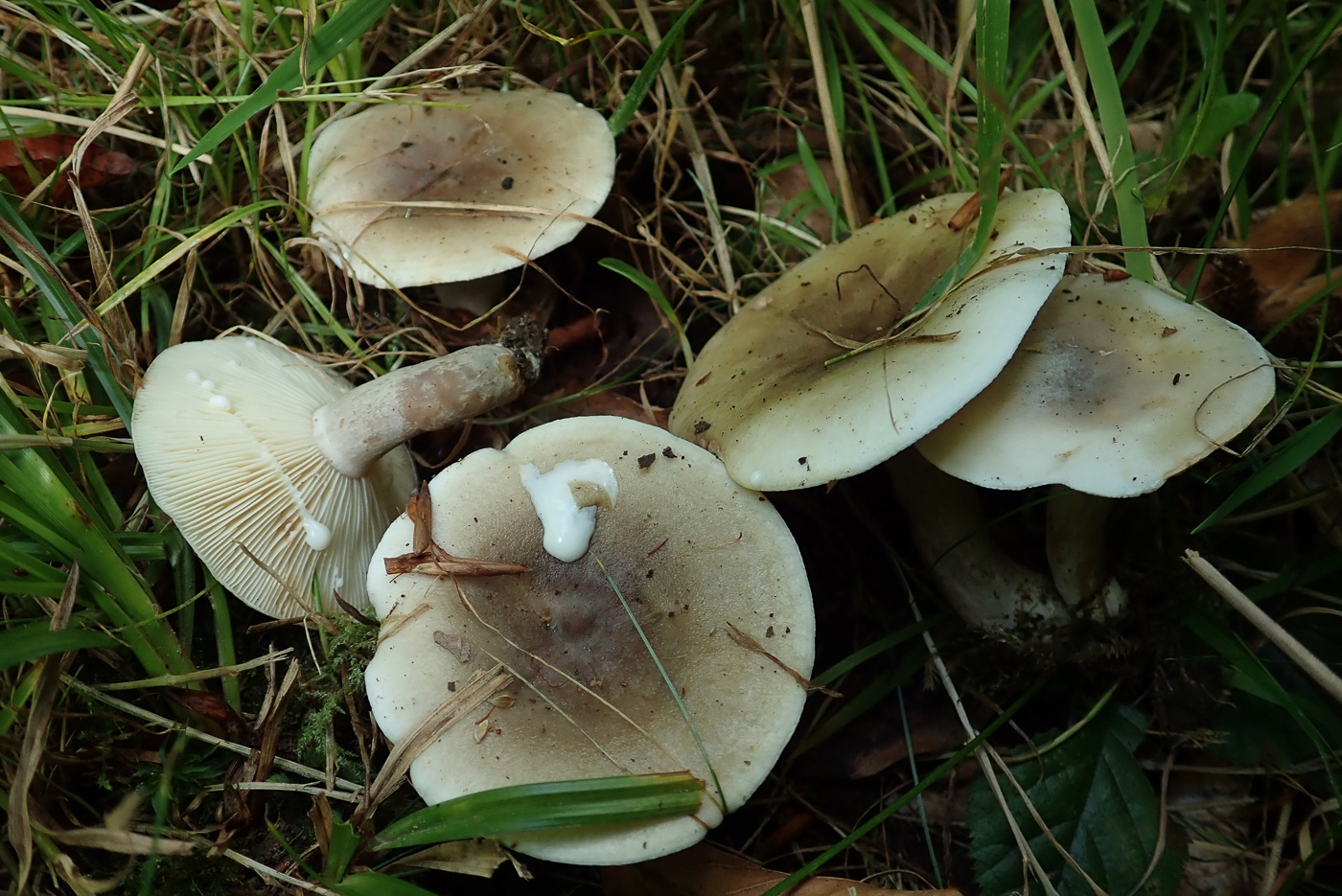 |
September 27th Lactarius fluens (a Milkcap with no common name)
This nice collection was found under Beech in Mousells Wood by Penny Cullington. An occasional species, it is easily confused with others such as L. blennius (see photo dated Sept 13) when the cap can have very similar markings. The best features to note are the distinct paler margin (very clear in this collection) and the copious milk (hence the species name) which literally drips - in this case from the damaged cap surface, where I'd removed a strand of dead grass, as well as the gills!
|
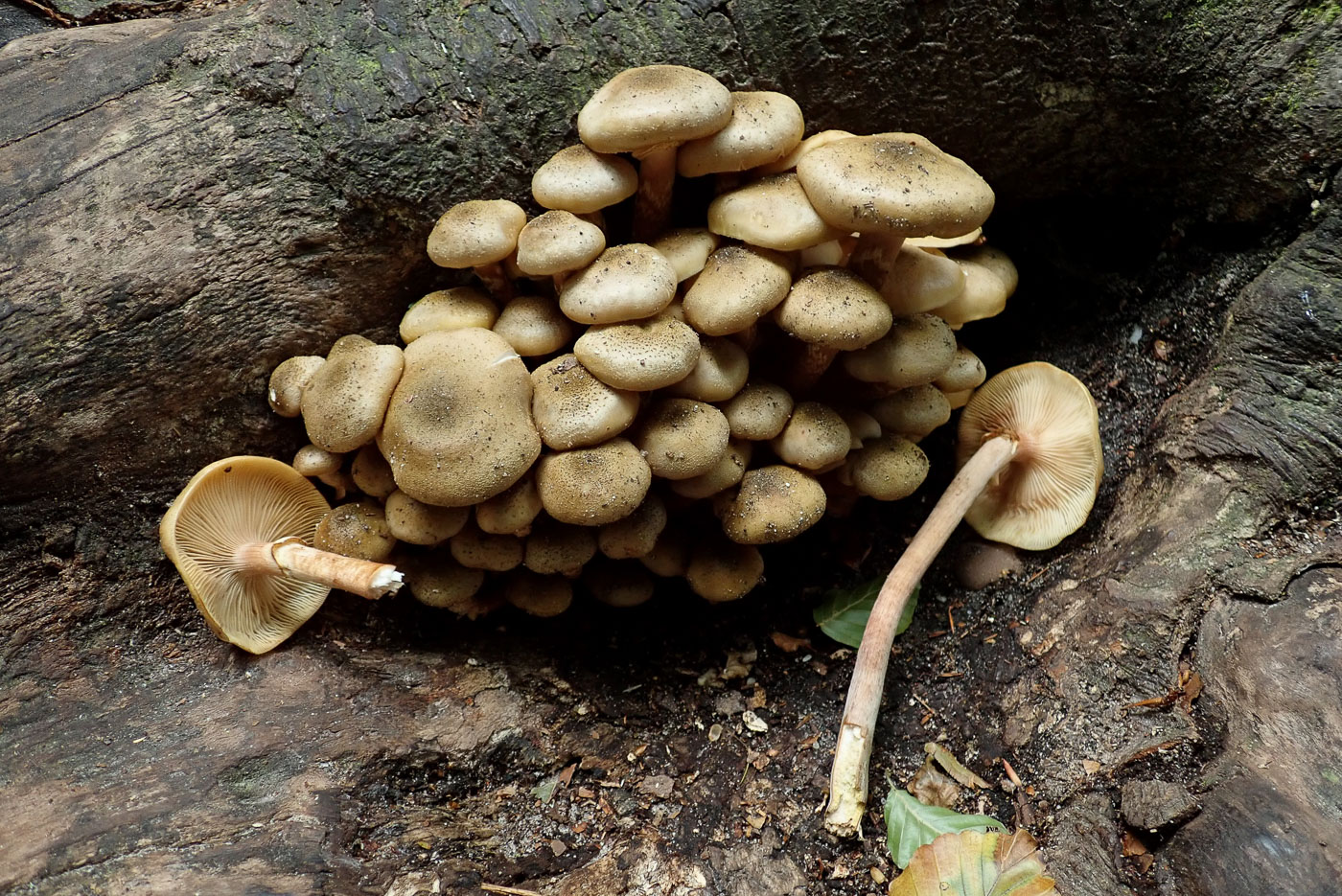
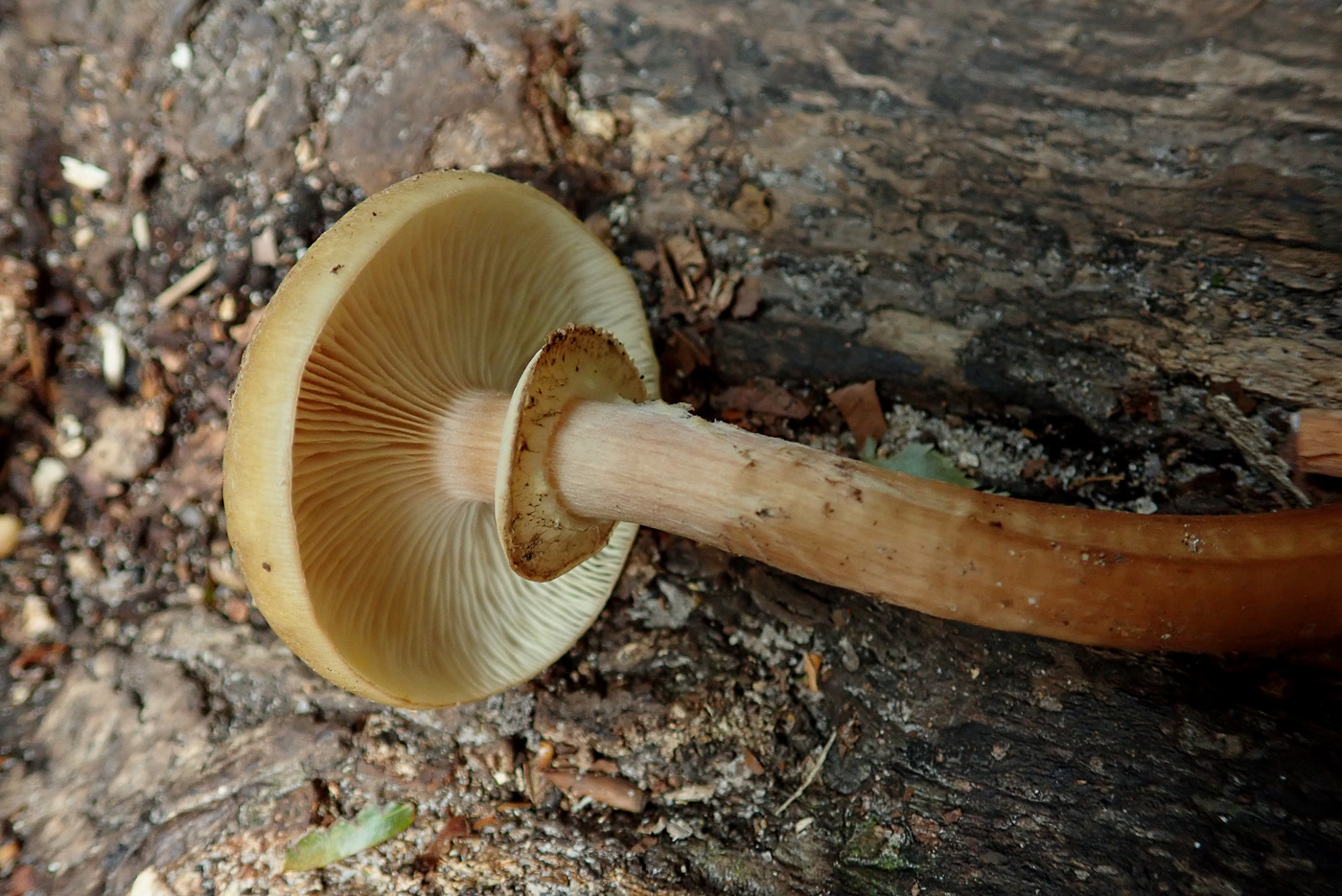 |
September 27th Armillaria mellea (Honey Fungus)
Penny Cullington found large quantities of this common fungus growing typically tightly clustered on and around a fallen Beech at Pullingshill Wood. A species no one wants to find in their garden, it is one which attacks and kills trees and shrubs, spreading via long black bootlace-like mycelial threads which one can often see on the surface of bare trunks when no fruit bodies are around. To tell A. mellea from the several other species in the genus, all but one of which have a ring as here, note the long cylindrical stem with no yellowing or swelling towards the base. Only this species is so dangerous to plants.
|
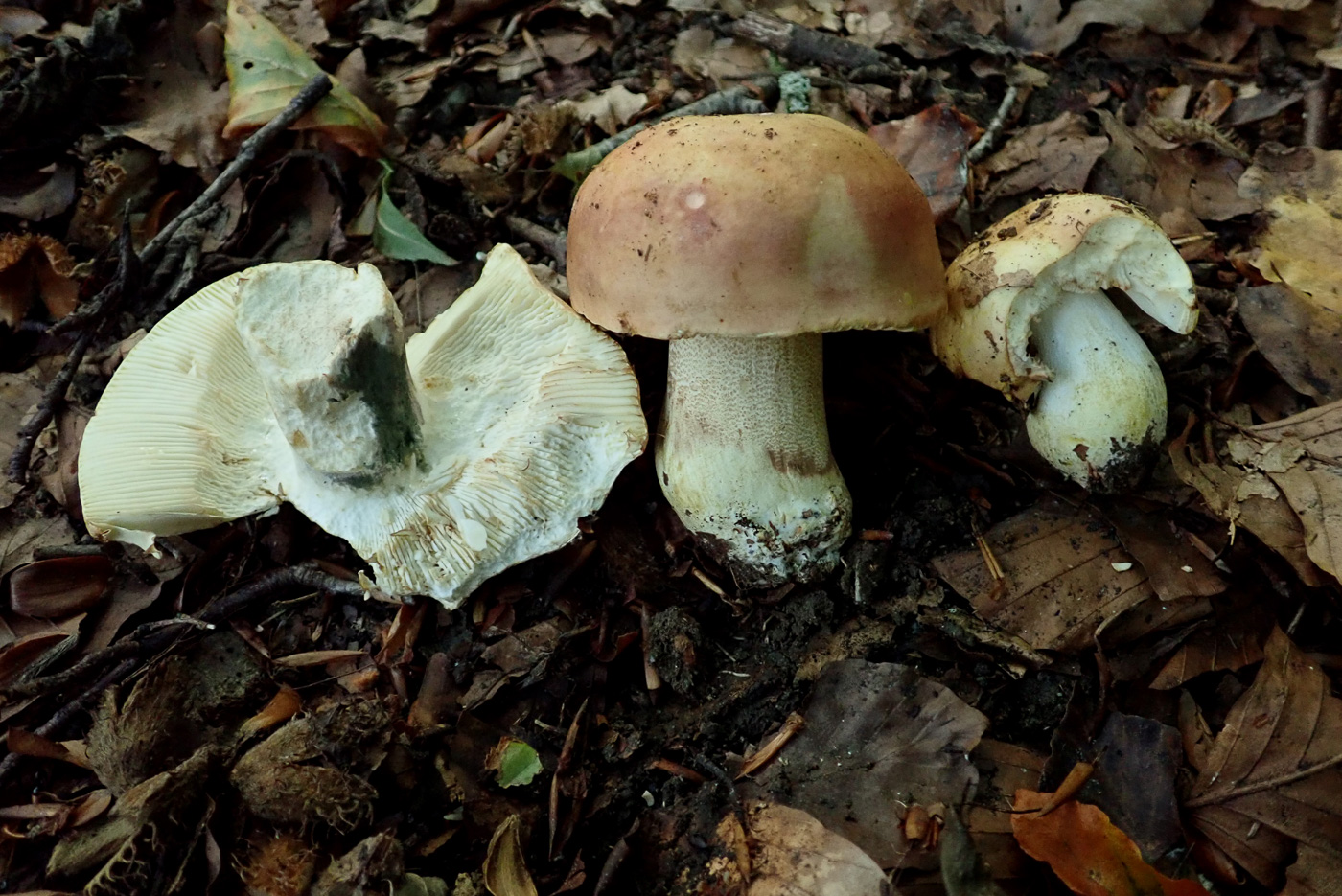 |
September 27th Russula faginea (A Brittlegill with no common name)
This was found by Penny Cullington in Mousells Wood under Beech, its host tree. This is a robust (caps up to 14 cm across) and also rare Brittlegill belonging to the Xerampelina group that is distinguished by smelling distinctly of cooked crab when mature! This group has a unique colour change reaction when the stem is rubbed with a Ferrous Sulphate crystal: instead of the normal rusty orange they turn dark green, eventually black. R. faginea is not often found but regularly turns up at this particular site – a typical Chiltern beech wood. (Note the green FE reaction on the rather damaged LH specimen.)
|
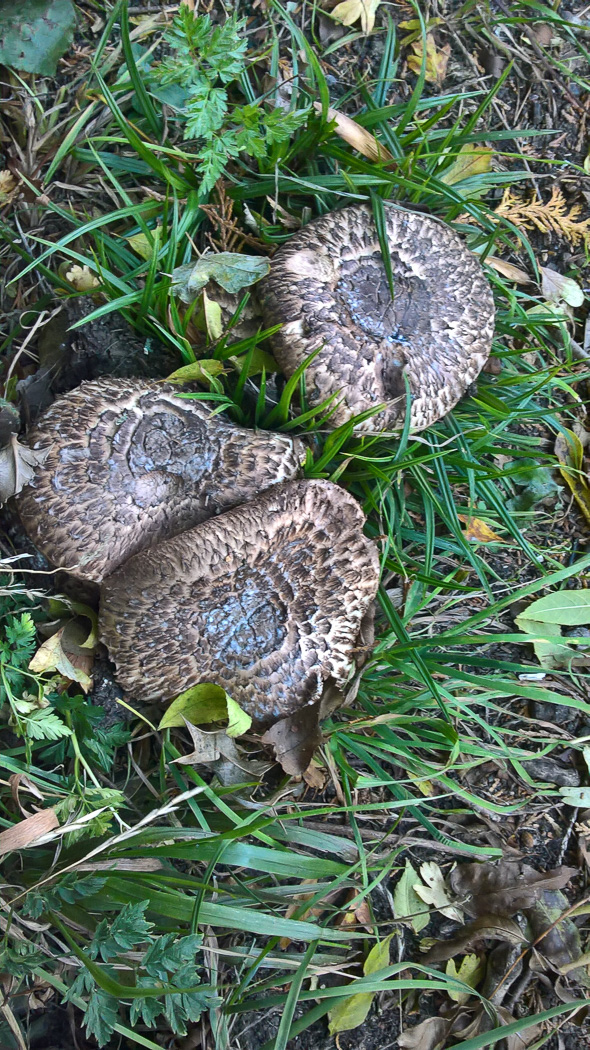 |
September 27th Agaricus bohusii (Medusa Mushroom)
Juliet Gudge noticed this unusually striking and rare species of Agaricus (Mushroom) under a hedge in Frieth. We have just 3 previous county records, the last in 2014, so this was a notable find. Once one turns it over and sees the typical free gills and ringed stem of a true Mushroom, thus confirming the genus, the dark raised almost triangular cap scales on a pale background make this species instantly recognisable. It also roots deeply and firmly into the soil and tends to grow in tight clusters as here, sometimes in large numbers.
|
September 26th 2020
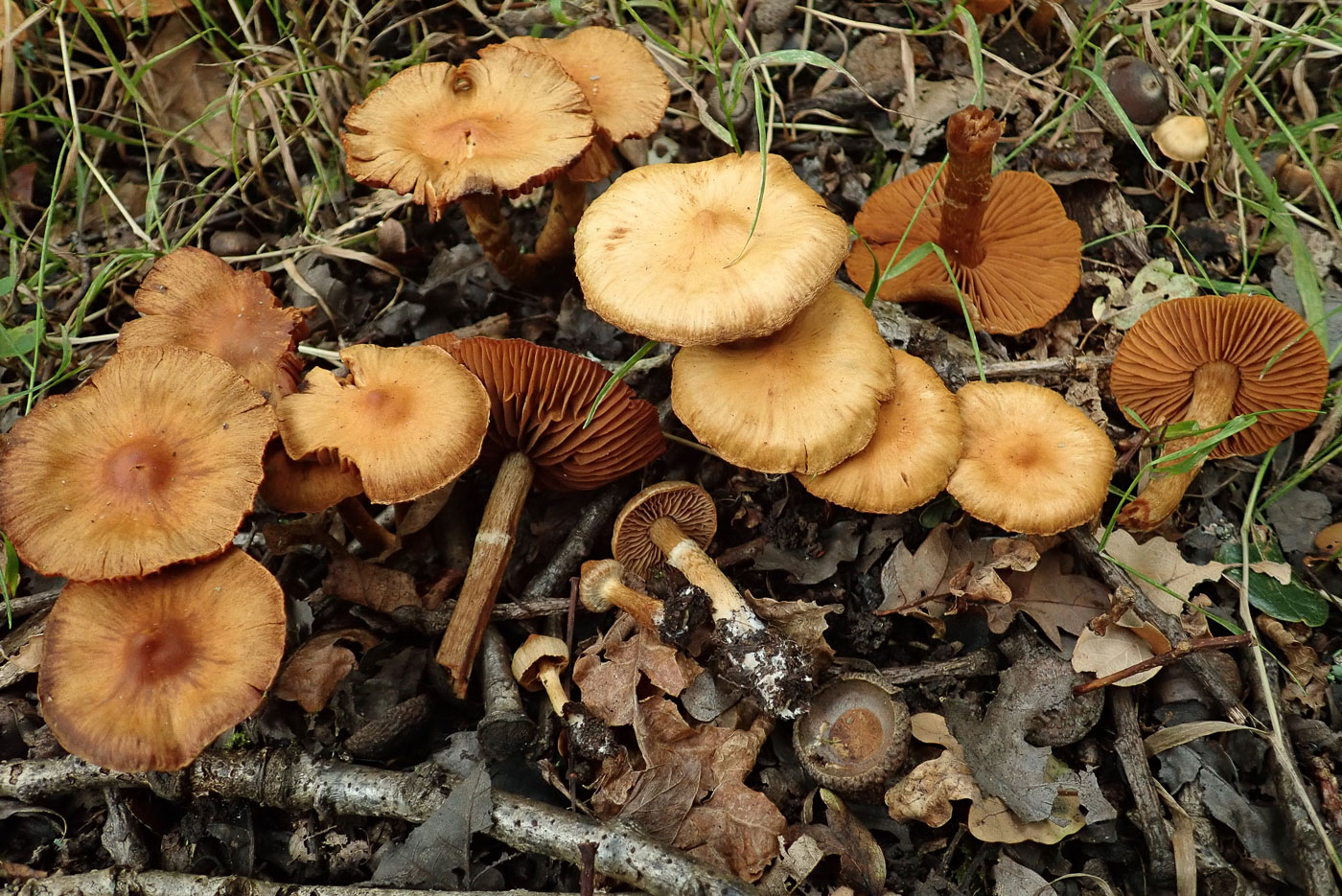 |
September 26th Cortinarius lacustris (a Webcap with not common name)
Penny Cullington found this group of Webcaps growing under Oak in mud at a pond edge in Naphill Common. By a lucky chance she was meeting up with Cortinarius expert Geoffrey Kibby the following day who was able to name it for her. There are very many similar Webcaps (from Section Telamonia) and very few mycologists who have the skills and experience to recognise some of them. This species was first described in 1997 and only identified as British in the last few years. Its typical habitat is exactly as above, i.e. in damp soil in broadleaved woodlands, most frequently under Oak, so a species new for the site and also for the county.
|
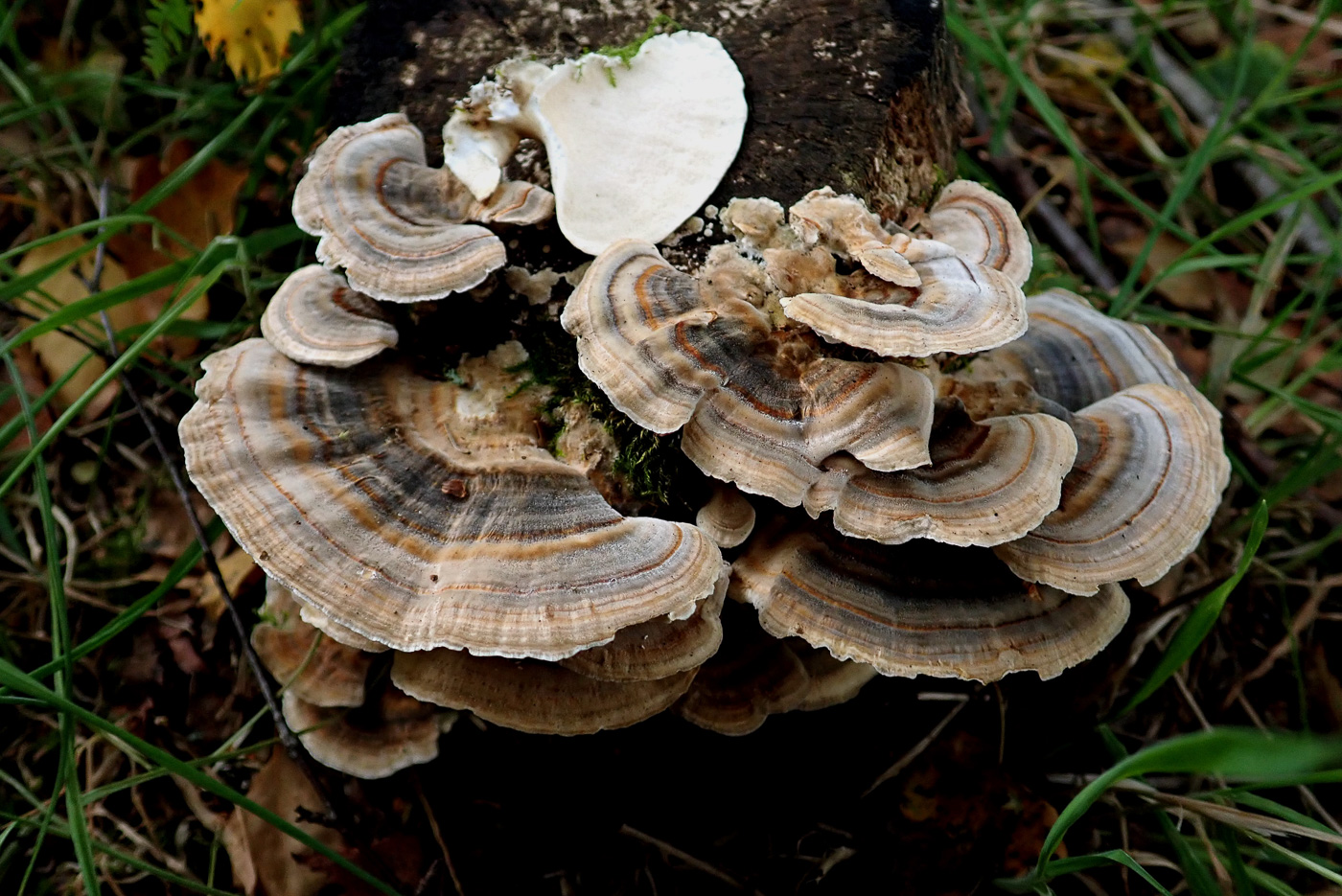
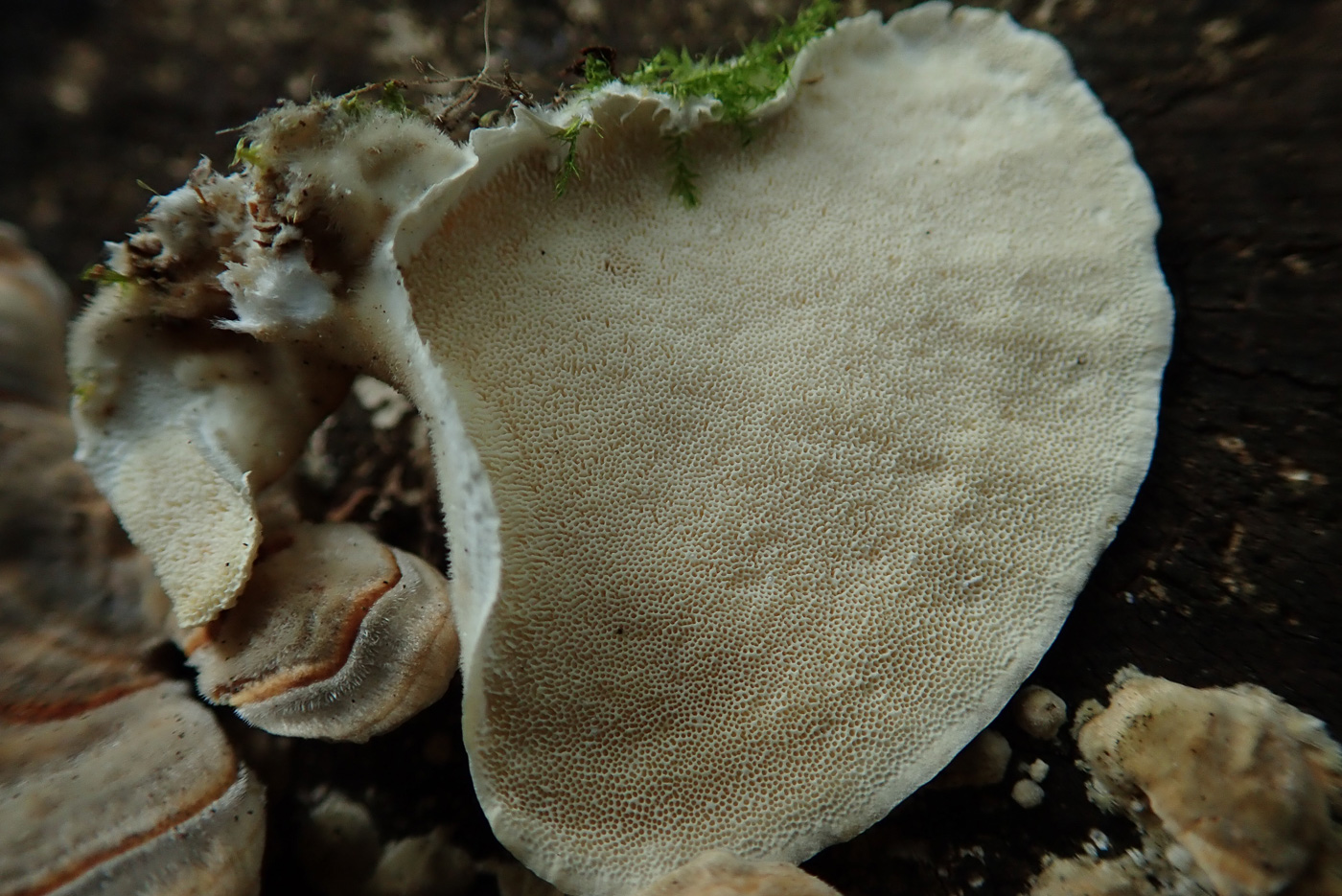 |
September 26th Trametes versicolor (Turkeytail)
This very common clustered bracket was found by Paul Cullington on a stump in Naphill Common. Like Stereum hirsutum (Hairy curtain Crust) it can be found at any time of year given favourable conditions, and is indeed sometimes mistaken for that species. Comparing the two: the zoned tops are extremely variable in colour but rarely orange rust as in that species. Also, turning a piece over reveals white distinct pores (see detailed photo) in contrast to the almost smooth orange underside of that species.
|
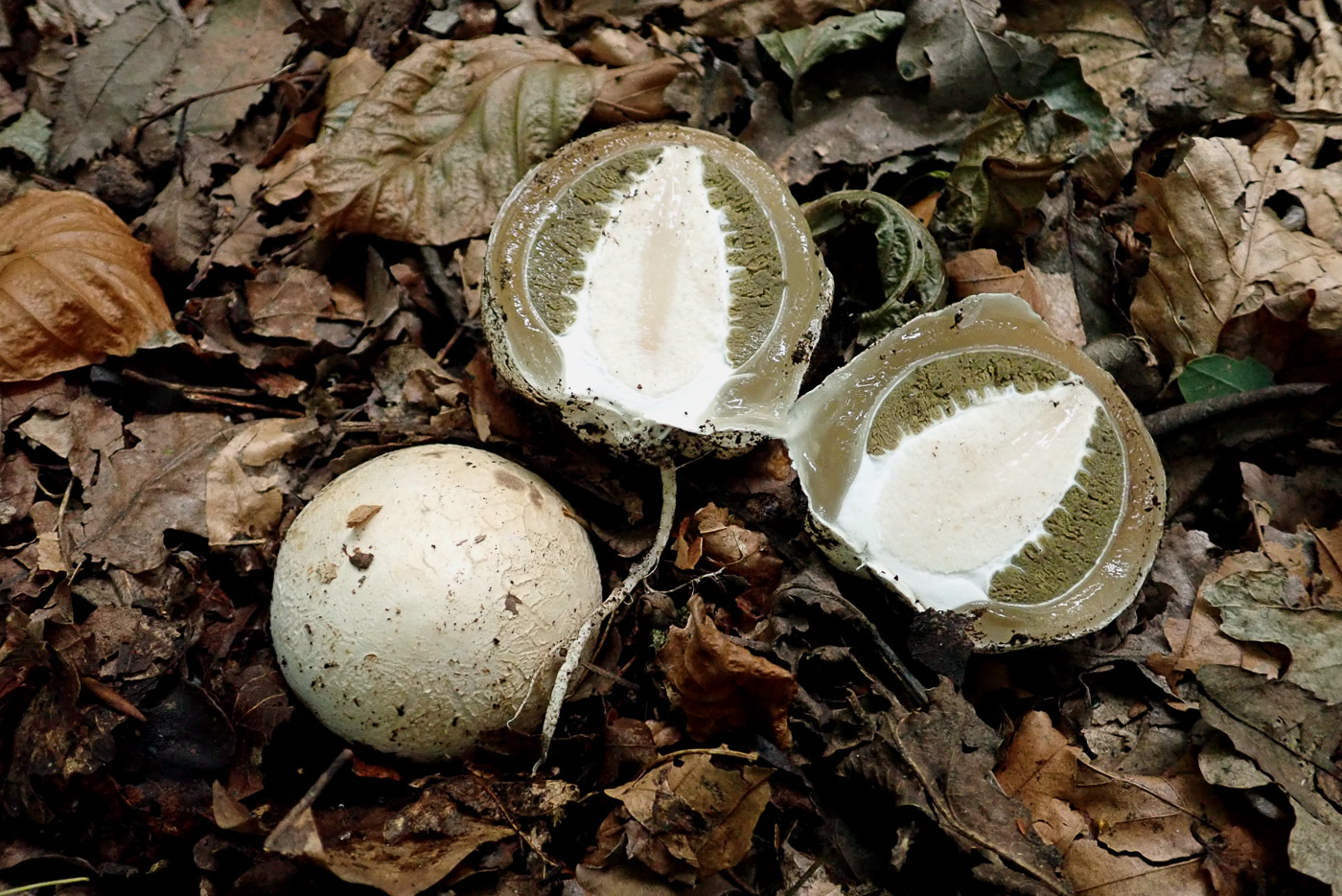 |
September 26th Phallus impudicus eggs (Stinkhorn)
Penny Cullington found these in litter in Naphill Common, though only in the egg state. She could tell from the lack of smell that no developed fruit bodies were around. Note the thick gelatinous outer layer which protects the developing fungus, recognisable even in this state when sliced open, also the strands of white mycelium at its base. It is only when expanded that the offensive smell gives away the presence of any fruit bodies nearby.
|
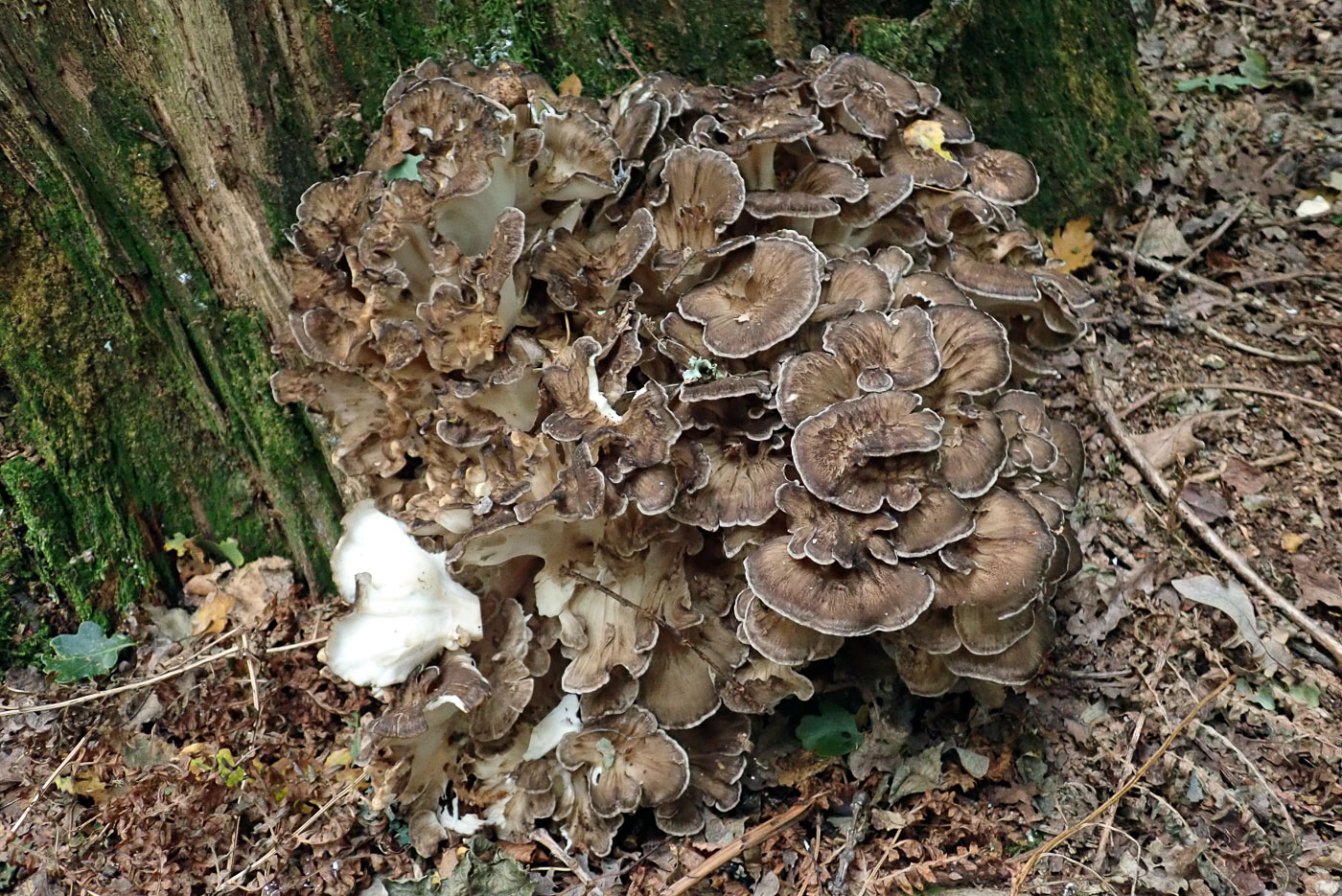
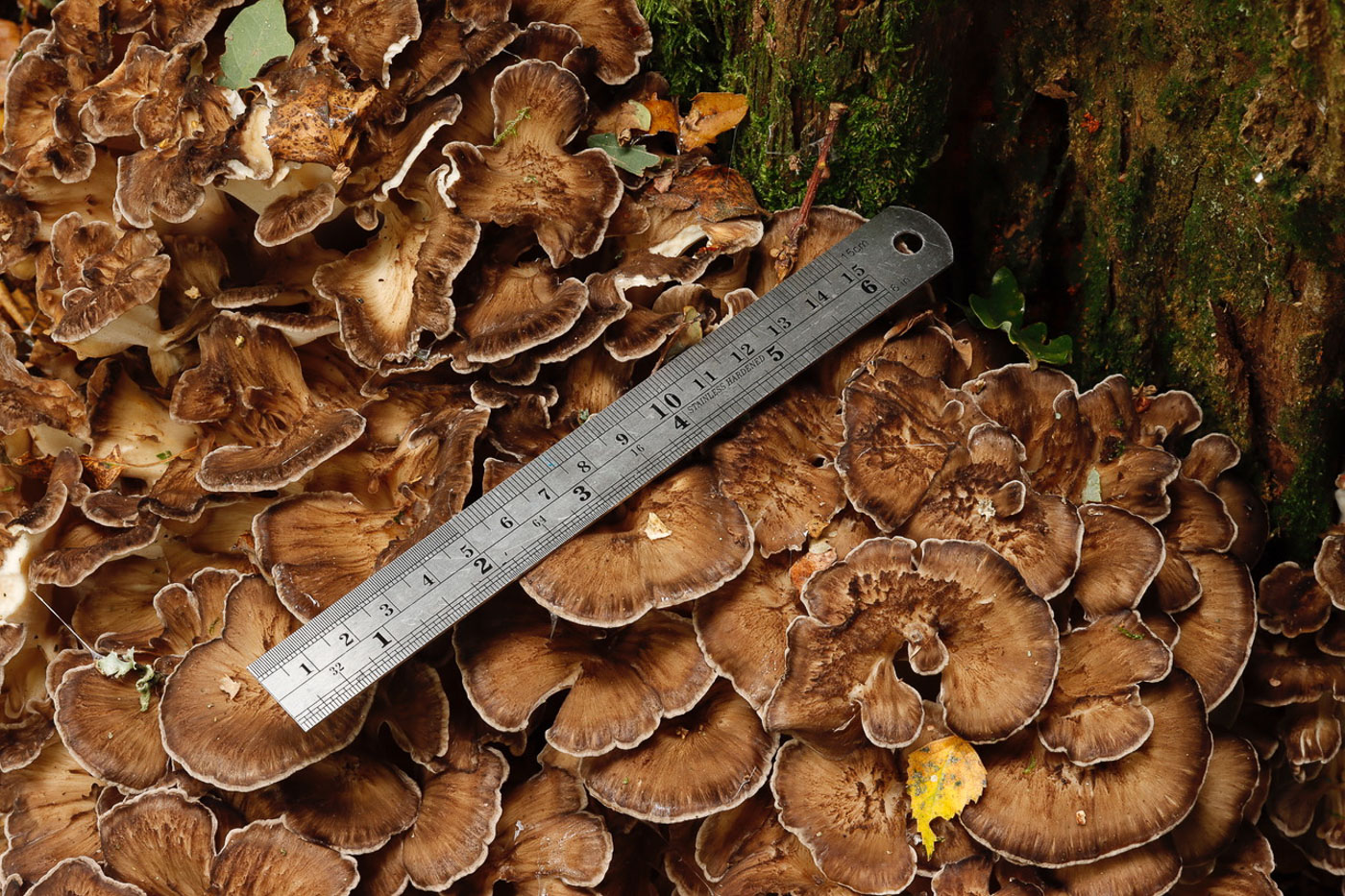 |
September 26th Grifola frondosa (Hen of the Woods)
This impressive bracket was found in Naphill Common on an old Oak trunk by Penny Cullington and (separately the same afternoon by) Paul Goby, his being the photo + ruler. An occasional species, it was new to the site last year. The tiered tightly formed fronds are typical and the only species with which it might possibly be confused is young Meripilus giganteus (Giant Polypore) before it has grown to be enormous when unmistakable as anything else. If in doubt, break off a piece and keep it 30 minutes or so. If it starts to blacken then you have the Meripilus as G. frondosa does not change colour.
|
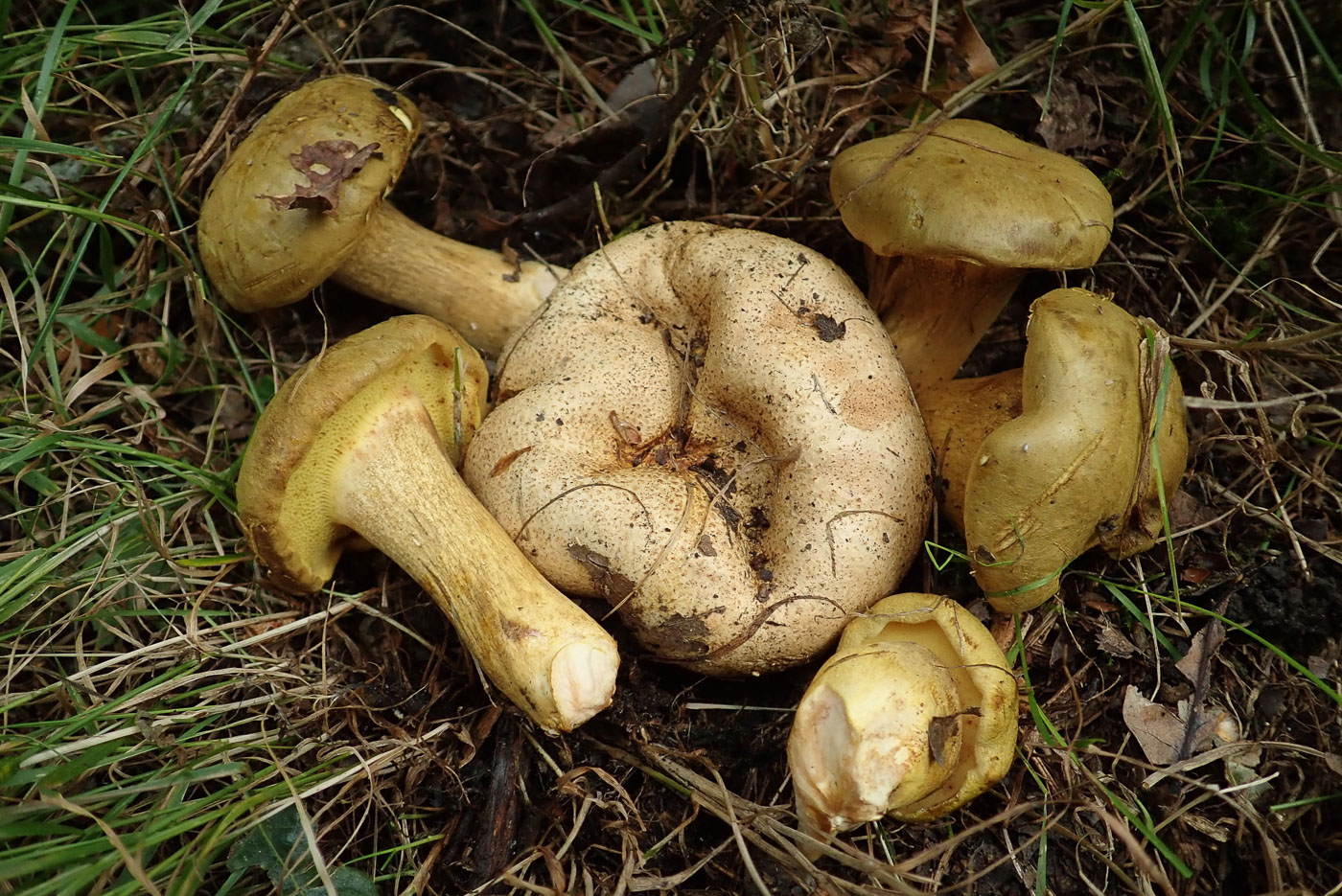 |
September 26th Pseudoboletus parasiticus (Parasitic Bolete)
Paul Cullington found this impressive collection growing out of its host fungus, Scleroderma citrinum, in Naphill Common. This appears to be new to the site (though I seem to recall finding it here last year?). It is the only bolete to have formed a connection with another fungus in this way, growing actually attached to it rather than to tree roots. In some years it is conspicuous by its absence but last year was a good one and it looks as if this year may well be too. So do look out for it wherever you see the very common S. citrinum (Common Earthball)
|
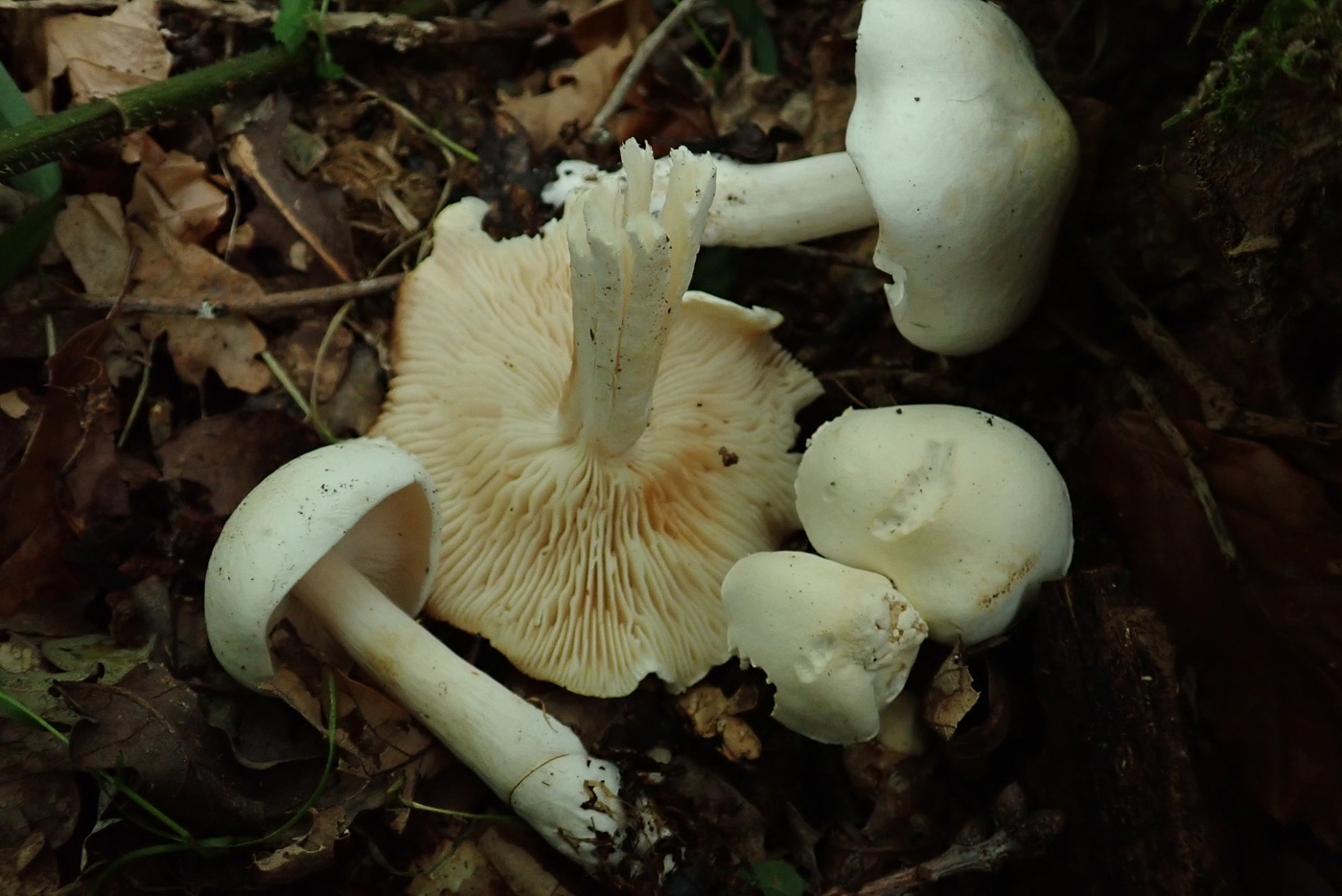 |
September 26th Tricholoma album (White Knight)
Paul Cullington found the collection under Oak in Naphill Common. One of several white capped Knights, all of which have a pervasive and unpleasant smell especially when contained for any time in a pot, this one is probably quite rare and probably often misdetermined. It is found only under Oak whereas the much commoner T. stiparophyllum (Chemical Knight) occurs under Birch and even more common T. lascivum (Aromatic Knight) occurs under many different trees.
|
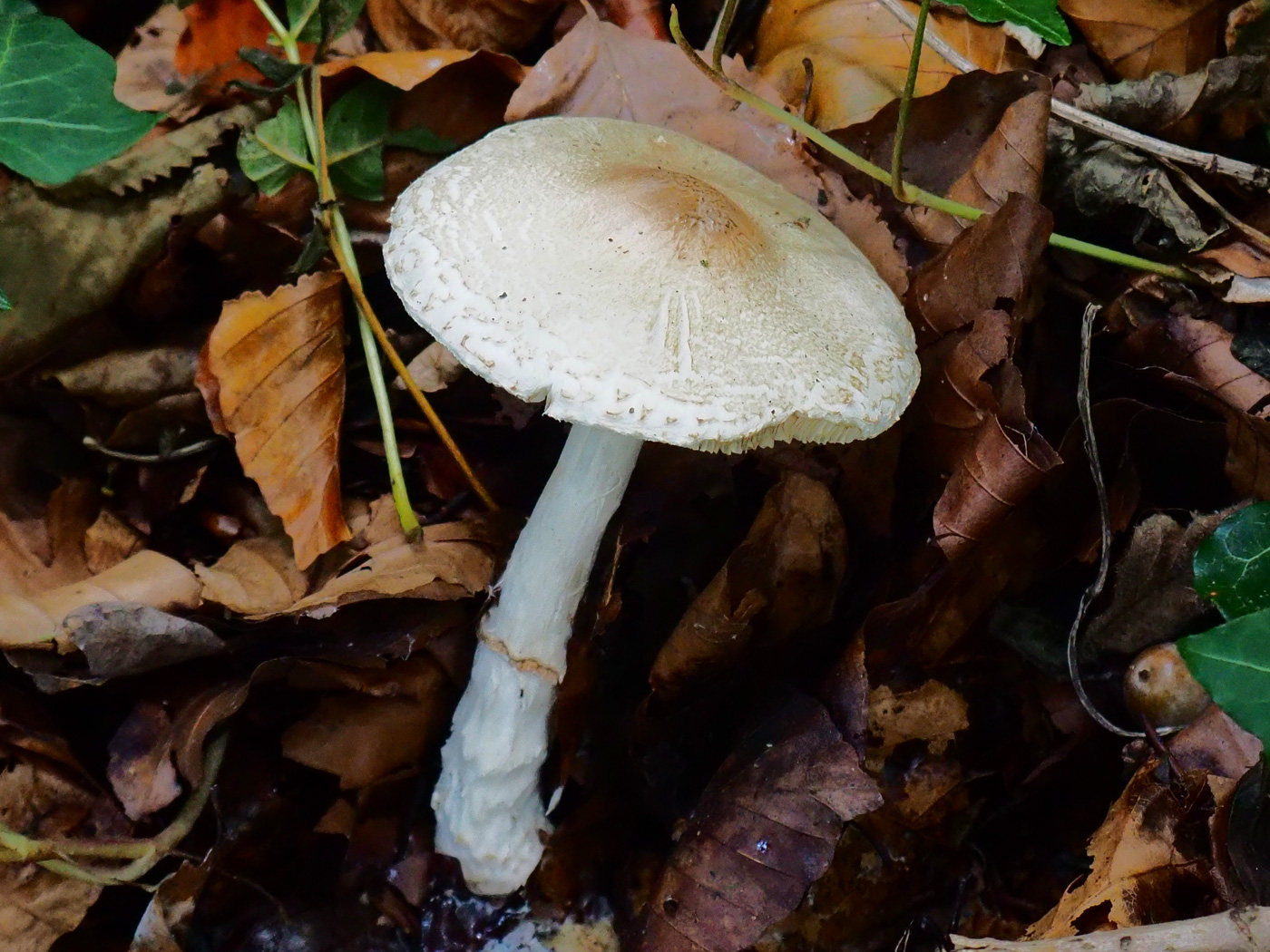 |
September 26th Lepiota ignivolvata (a Dapperling with no common name)
John Catterson found this beautiful and rare mushroom in Tinkers Wood in the identical spot where he remembered it fruiting in 2014 when identified by Derek Schafer. Found in calcareous woodland with Beech, the diagnostic features are the cream cap with rusty orange centre together with the rather low slung stem ring having a distinctive rusty rim. It is a medium sized Dapperling having the typical white free gills of the genus and an unpleasant smell similar to that of the common Lepiota cristata (Stinking Dapperling).
|
September 25th 2020
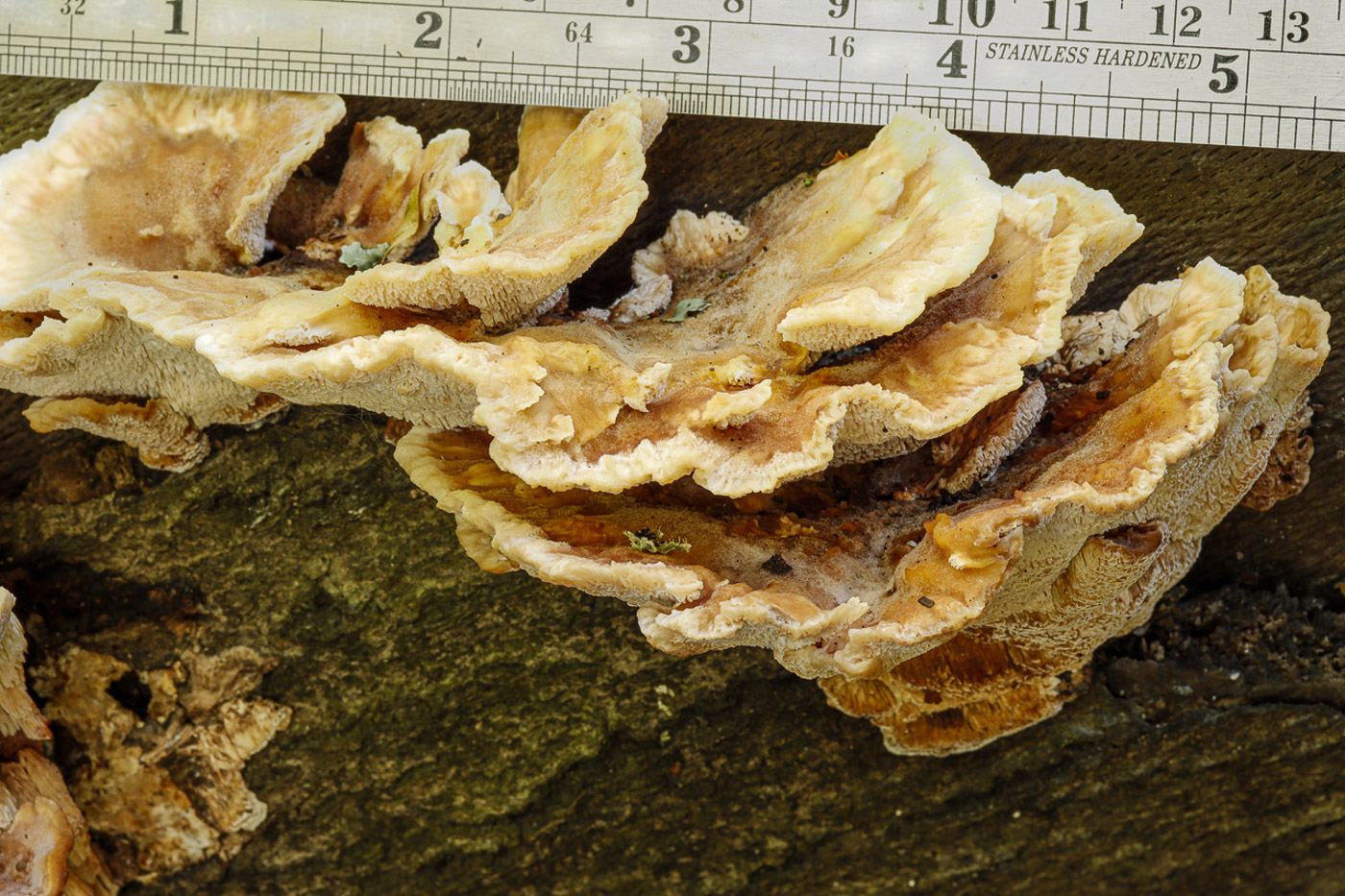
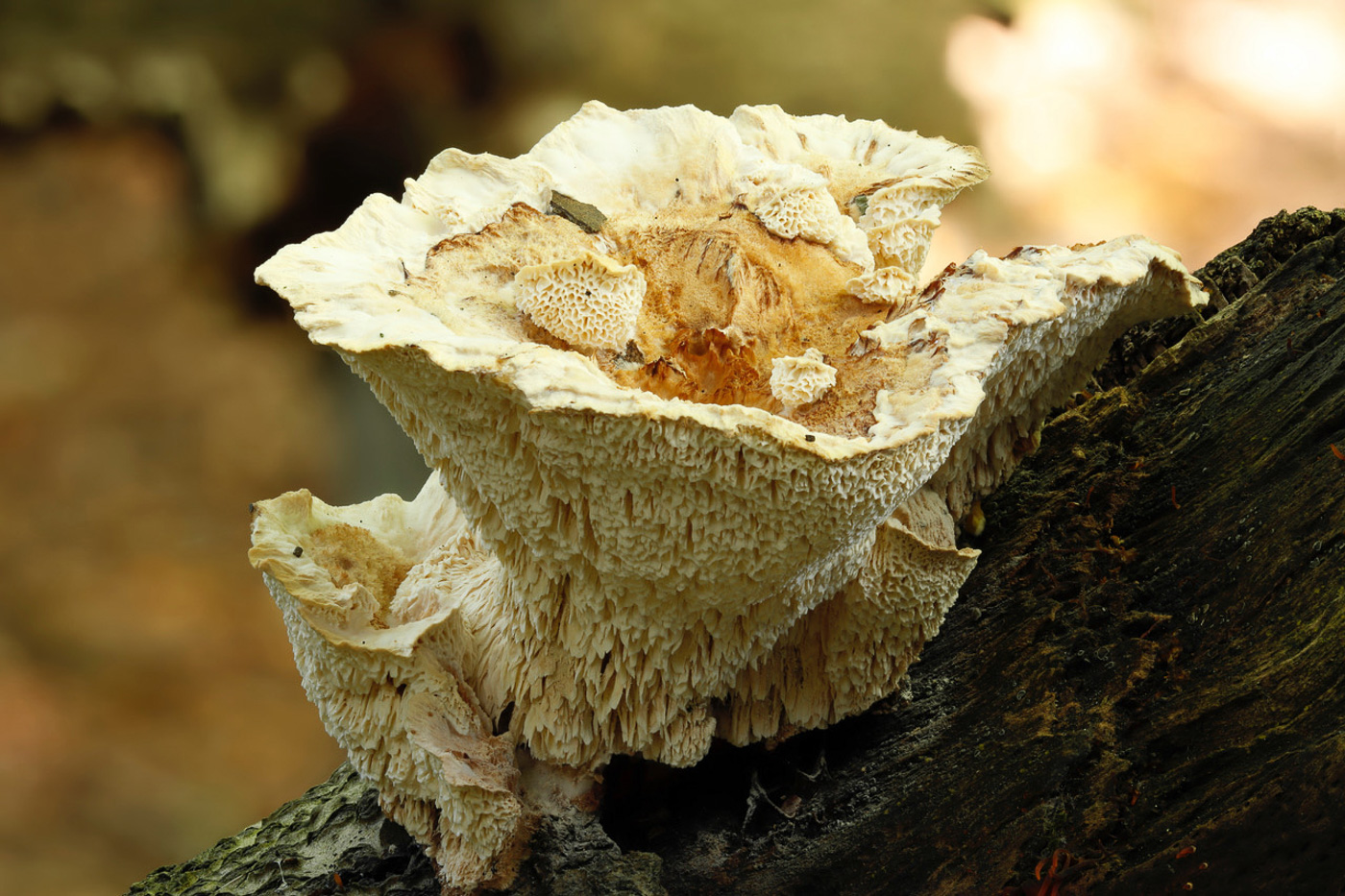
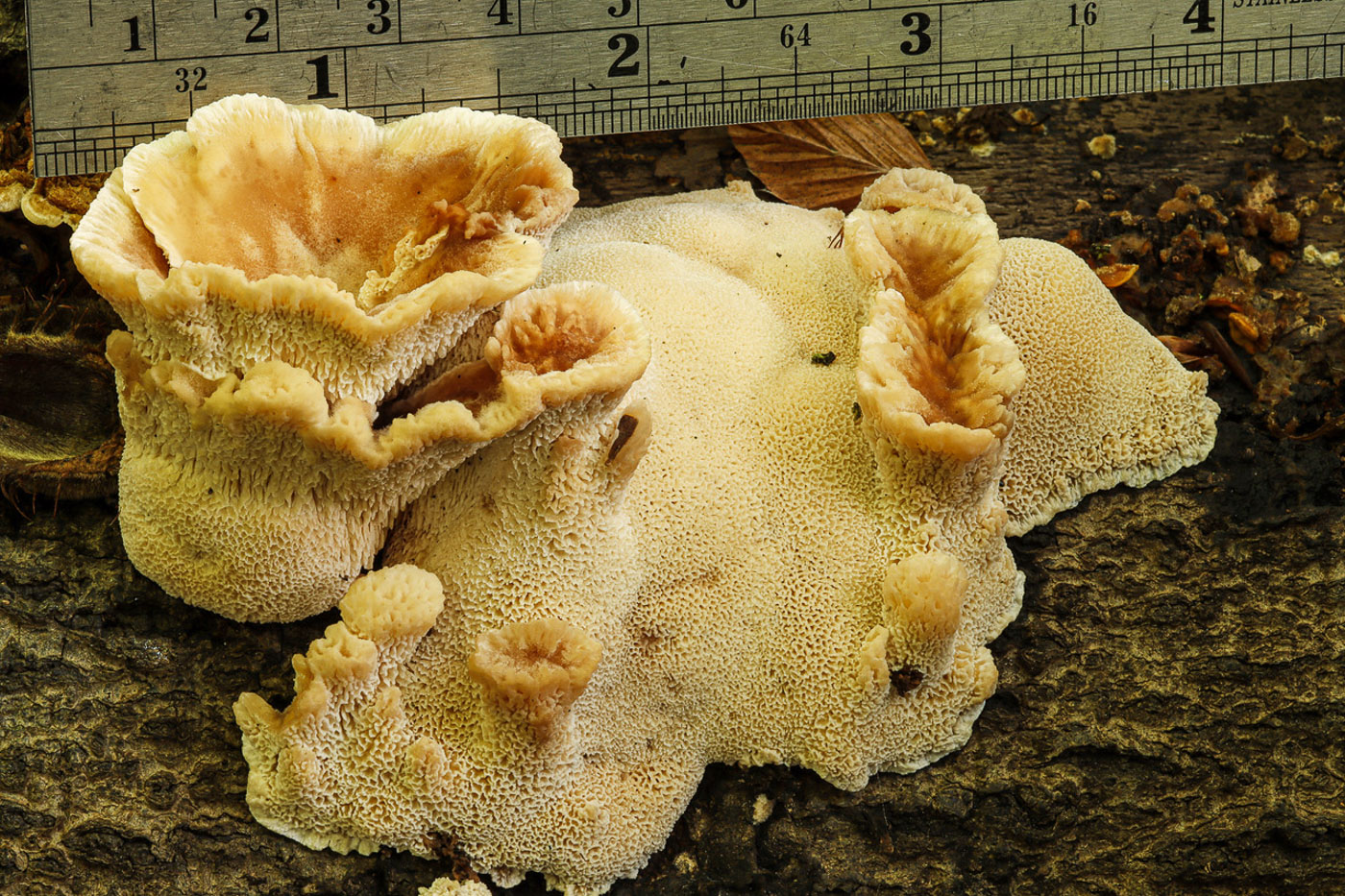 |
September 25th Abortiporus biennis (Blushing Rosette)
Paul Goby first noticed this quite common bracket on a Beech log in Naphill Common and it was the subject of interest over the next week in case it was a rarity. It was eventually identified by Martyn Ainswoth (RBG Kew)  . Commonly found growing on submerged roots at pathsides, this species is much less often found on logs (as here) when it appears somewhat atypical. Note the labyrinthine (maze-like) pore formation and pinkish tones which are key features. . Commonly found growing on submerged roots at pathsides, this species is much less often found on logs (as here) when it appears somewhat atypical. Note the labyrinthine (maze-like) pore formation and pinkish tones which are key features.
|
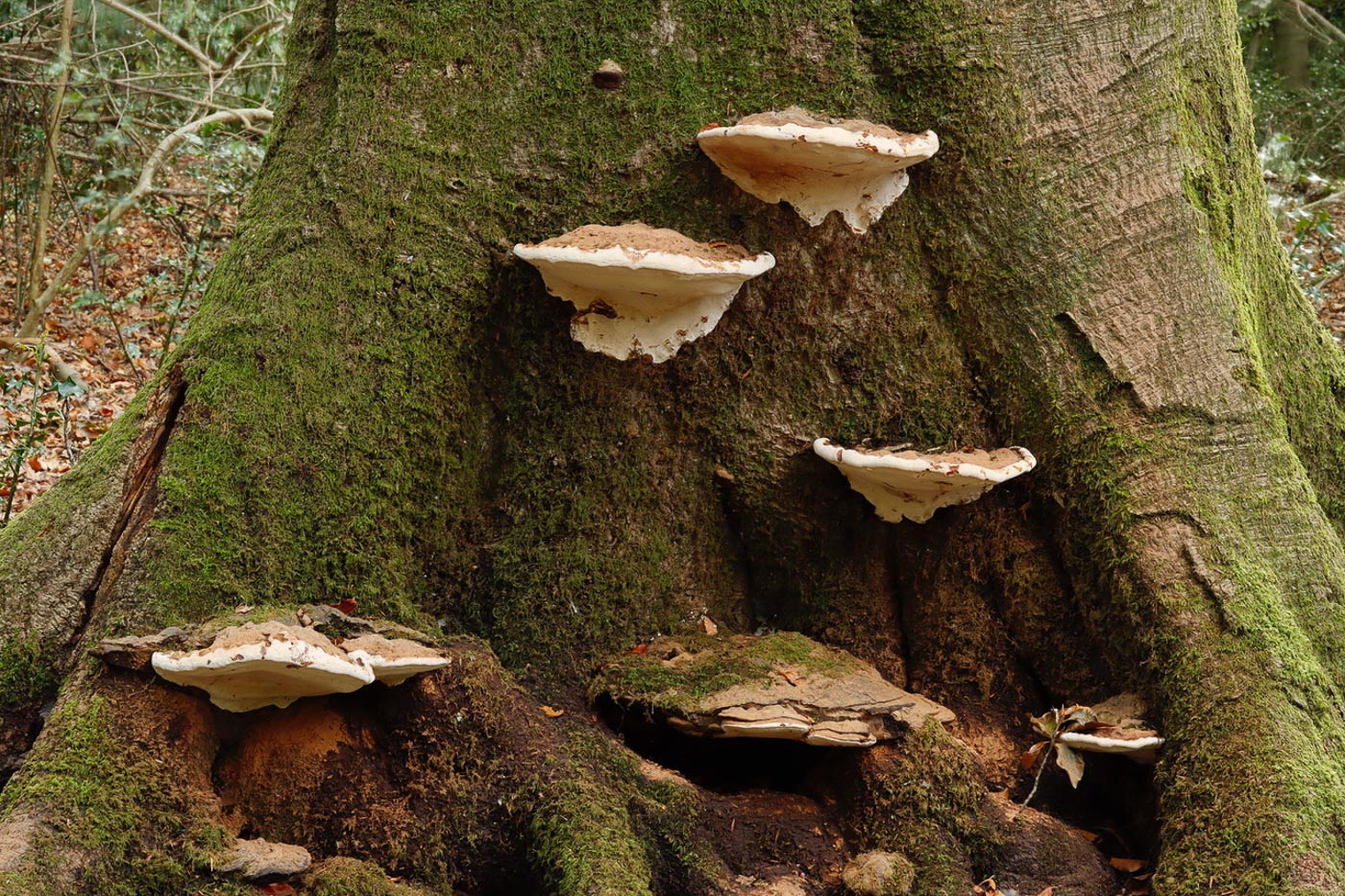
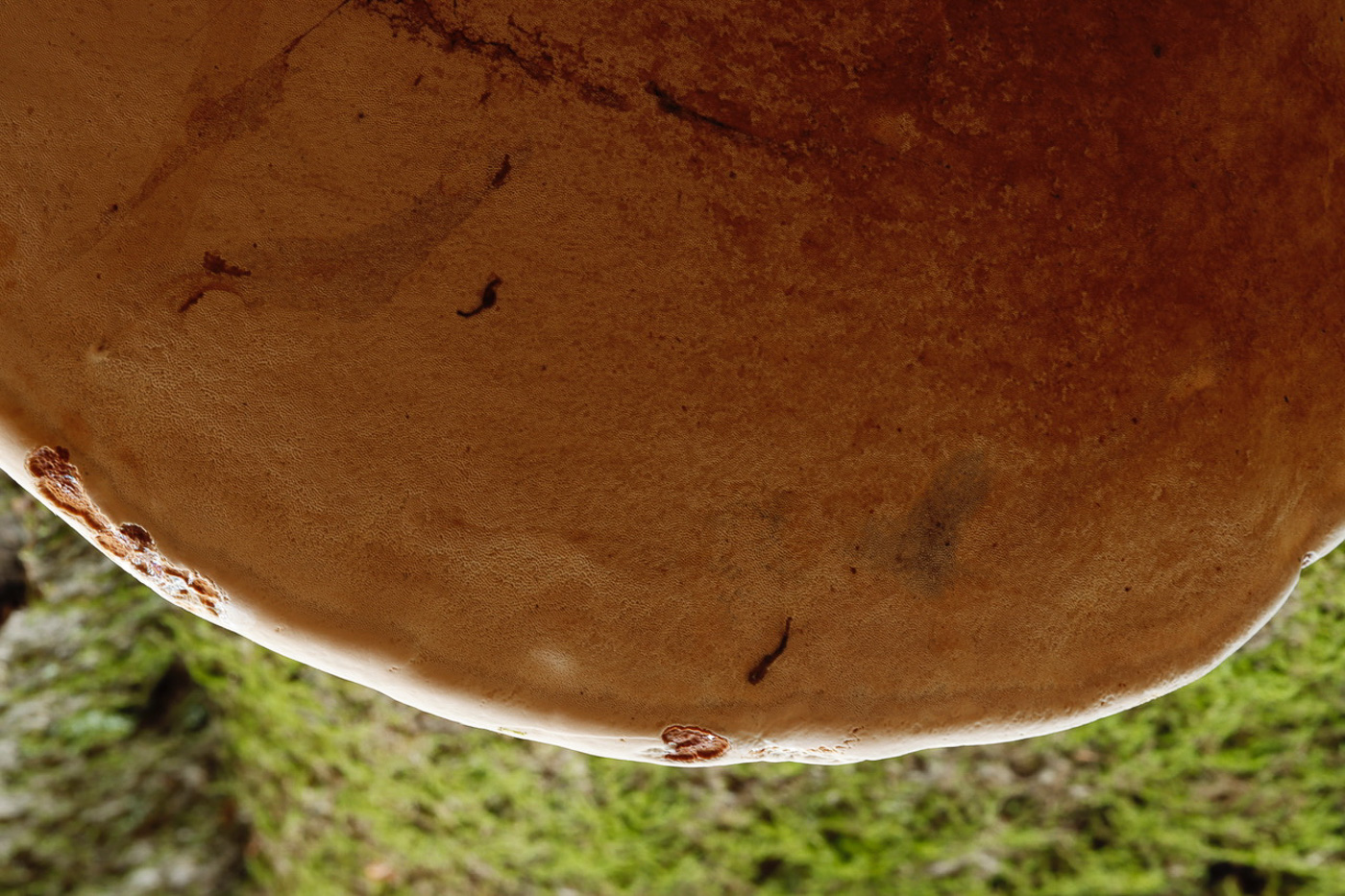
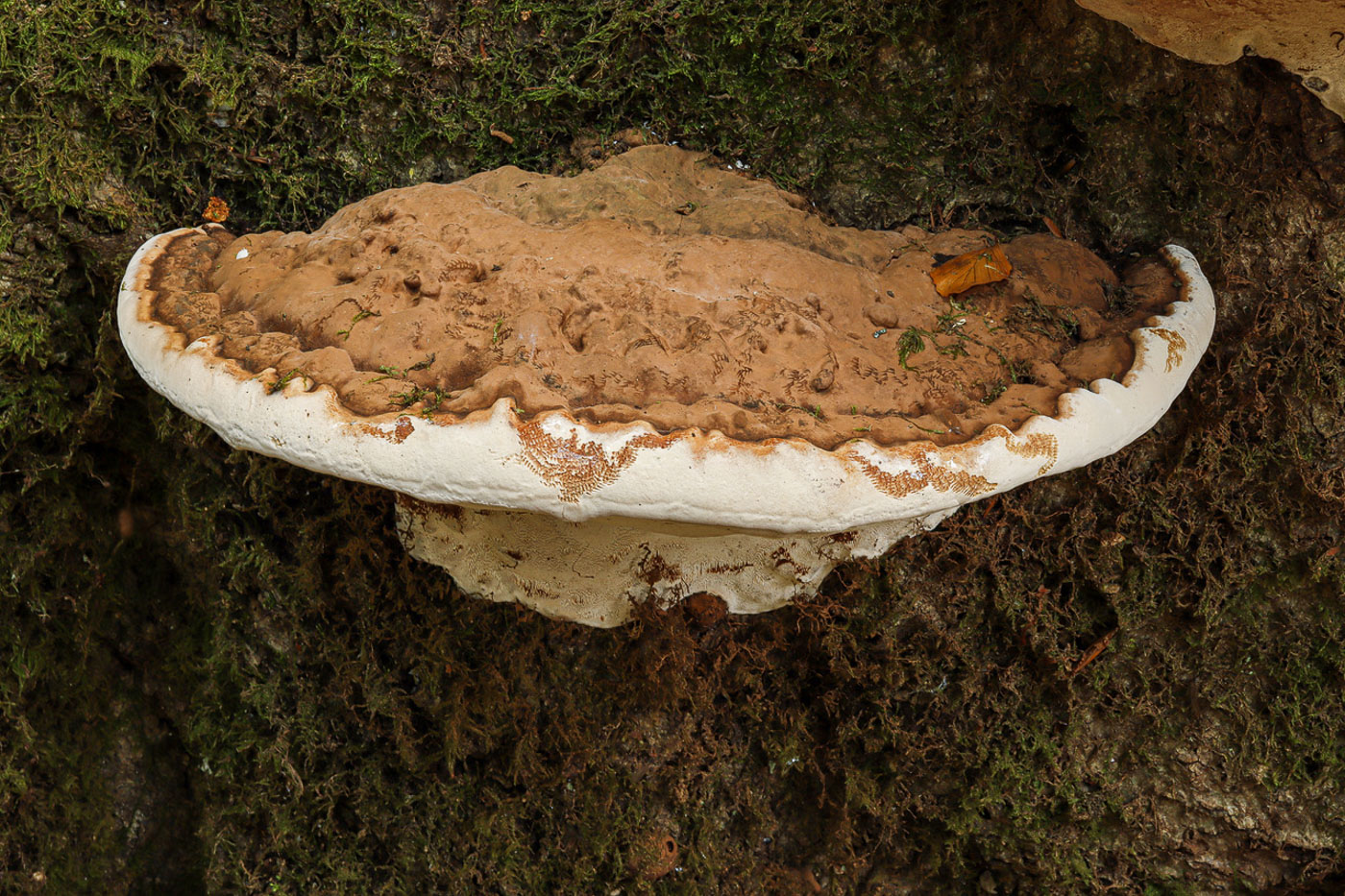
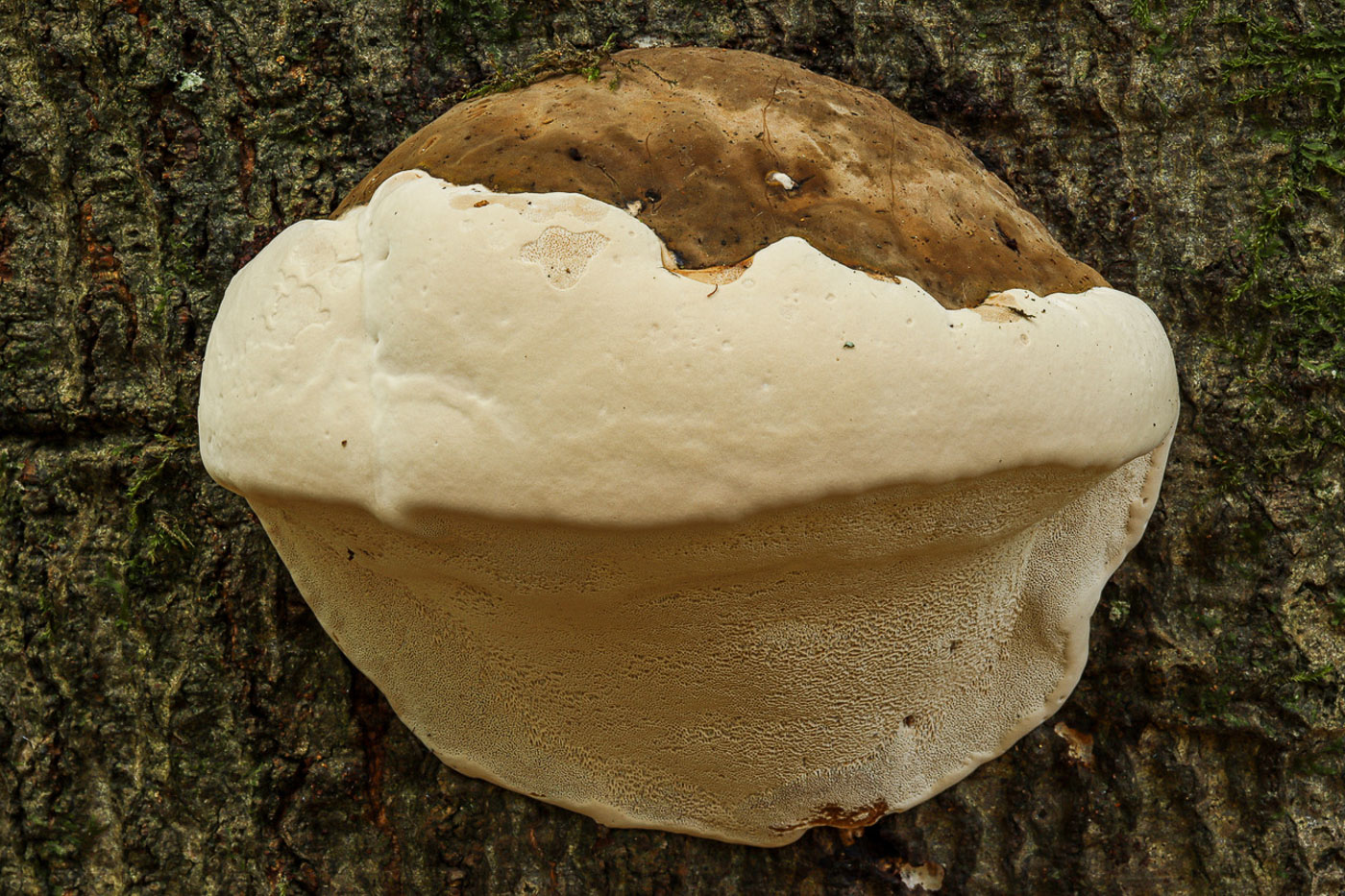 |
September 25th Ganoderma australe (Southern Bracket)
Paul Goby found this very common bracket on living Beech at Naphill Common. This is one of two extremely similar species which cannot with any certainty be separated without measuring their spores (not done in this case, so no guarantee of accuracy here). This is normally by far the commoner of the two in question - the other being G. applanatum (Artist's Bracket), but at Naphill Common we often find G. applanatum, proven by the tell tale presence underneath of the galls of a fly which (it appears) only occur on that particular species. As these galls are not visible on the pores of Paul's collection I've therefore guessed that this must be G. australe. Note that though the pore surface is pale, the spores are cocoa brown, in fact visible in the photo 1 where the wood / bark beneath each bracket has changed colour due to the spore deposit. Photo 2 is a close-up of the pores also coloured by the spores.
|
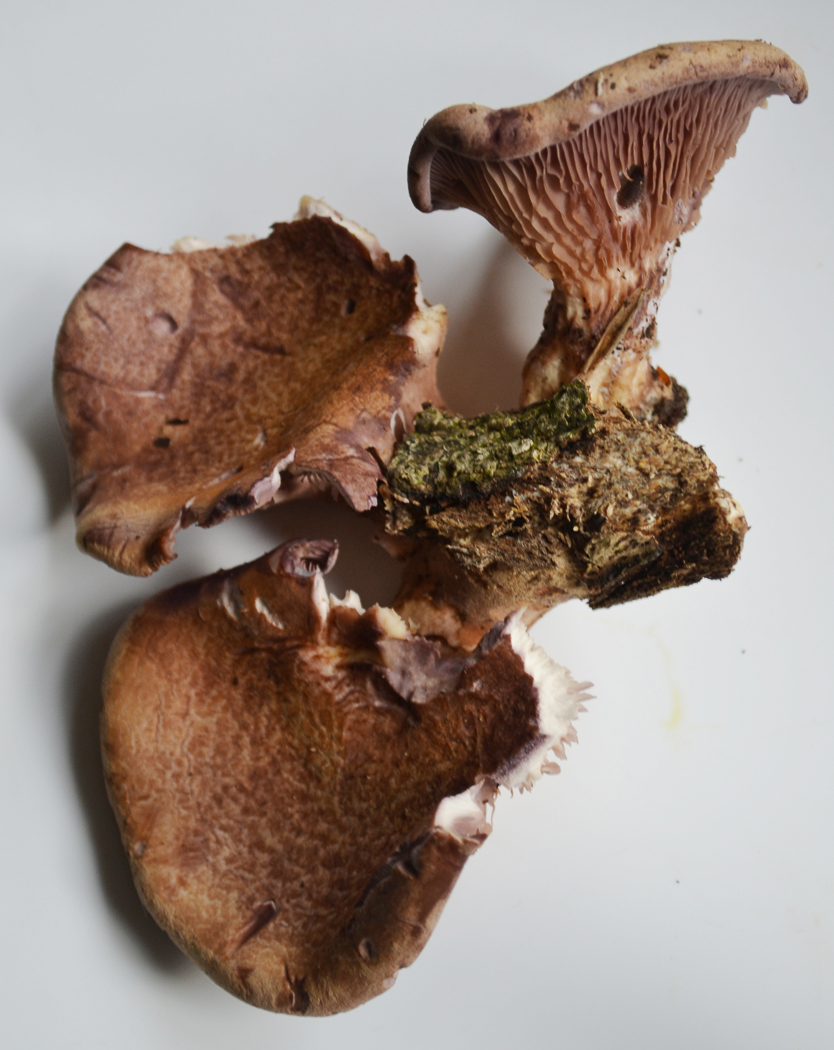 |
September 25th Panus conchatus (Lilac Oysterling)
Tony Marshall found this cluster on a stump at the roadside in Prestwood. Not rare but certainly only occasional, the species has similarities to Oyster Mushrooms which also grow on fallen deciduous wood and have decurrent (sloping) gills. Notable features of this species are the strongly funnel-shaped caps and subtle lilac tints to the gills and stem when young, though (in common with Wood Blewits) this tends to fade to tan brown as it matures. It has a pleasant sweet smell.
|
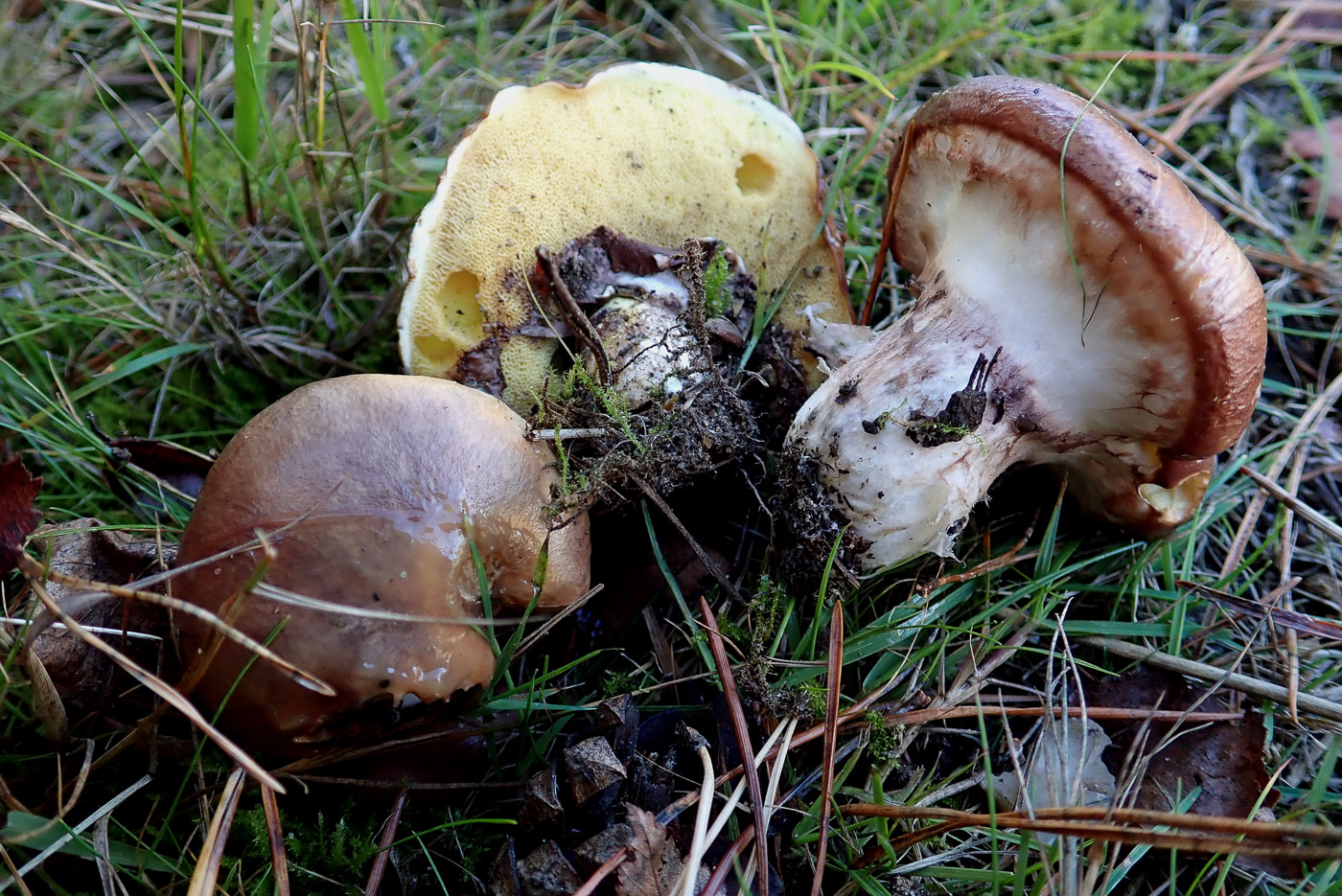 |
September 25th Suillus luteus (Slippery Jack)
This, our 18th species of bolete this month, was found under Pine at Stoke Common by Penny Cullington. Unfortunately not the most photogenic material, it does show the basic diagnostic features: a very sticky rich brown cap, yellow pores and a stem with a significant membranous ring (seen still well attached and covering the pores in the RH specimen but leaving just some brownish remnants on the central specimen). Suillus grevillei Larch Bolete) has a similar ring (see photo dated Sept 16th for comparison) but grows exclusively under Larch and has a paler cap; today's species grows exclusively under Pine.
|
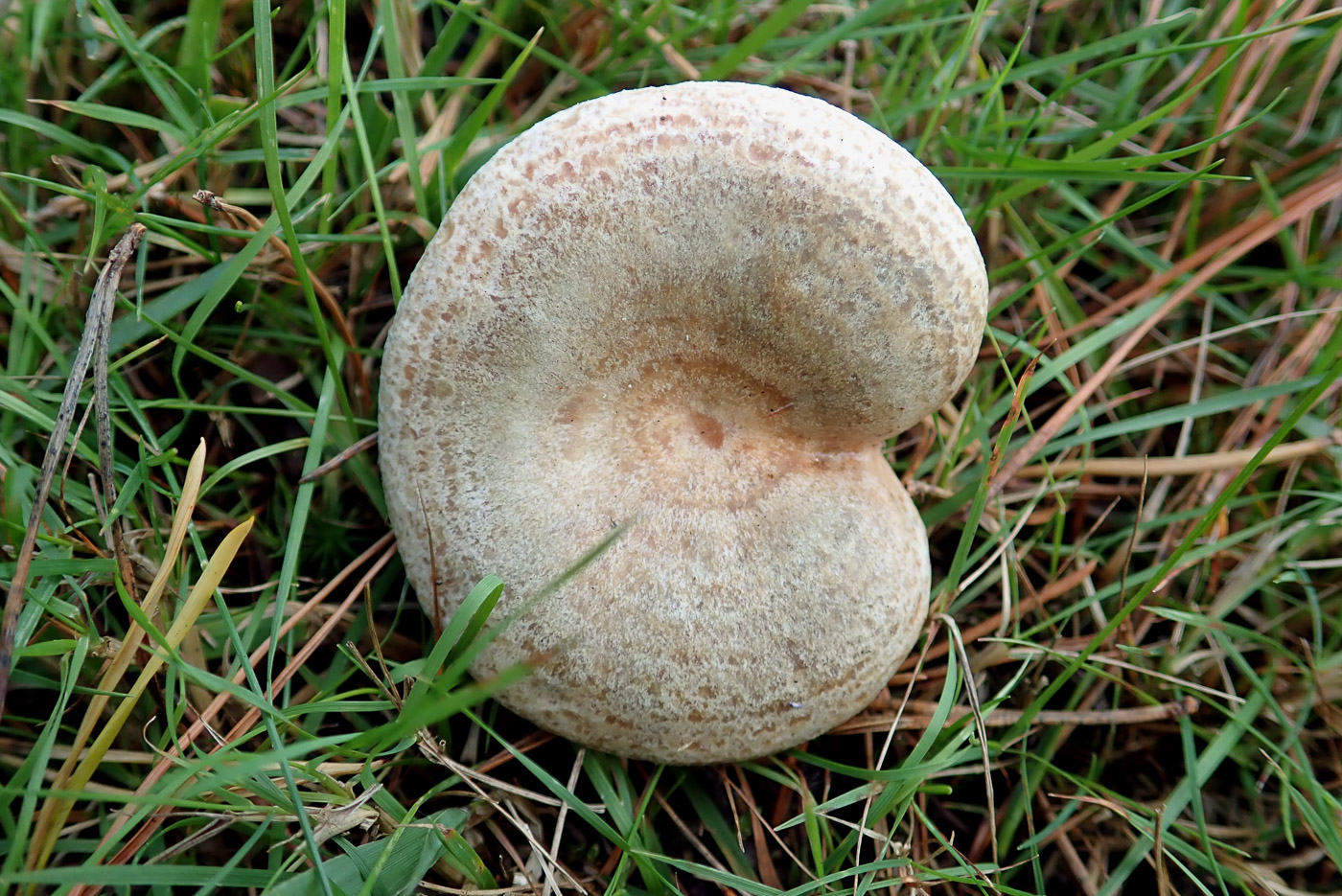
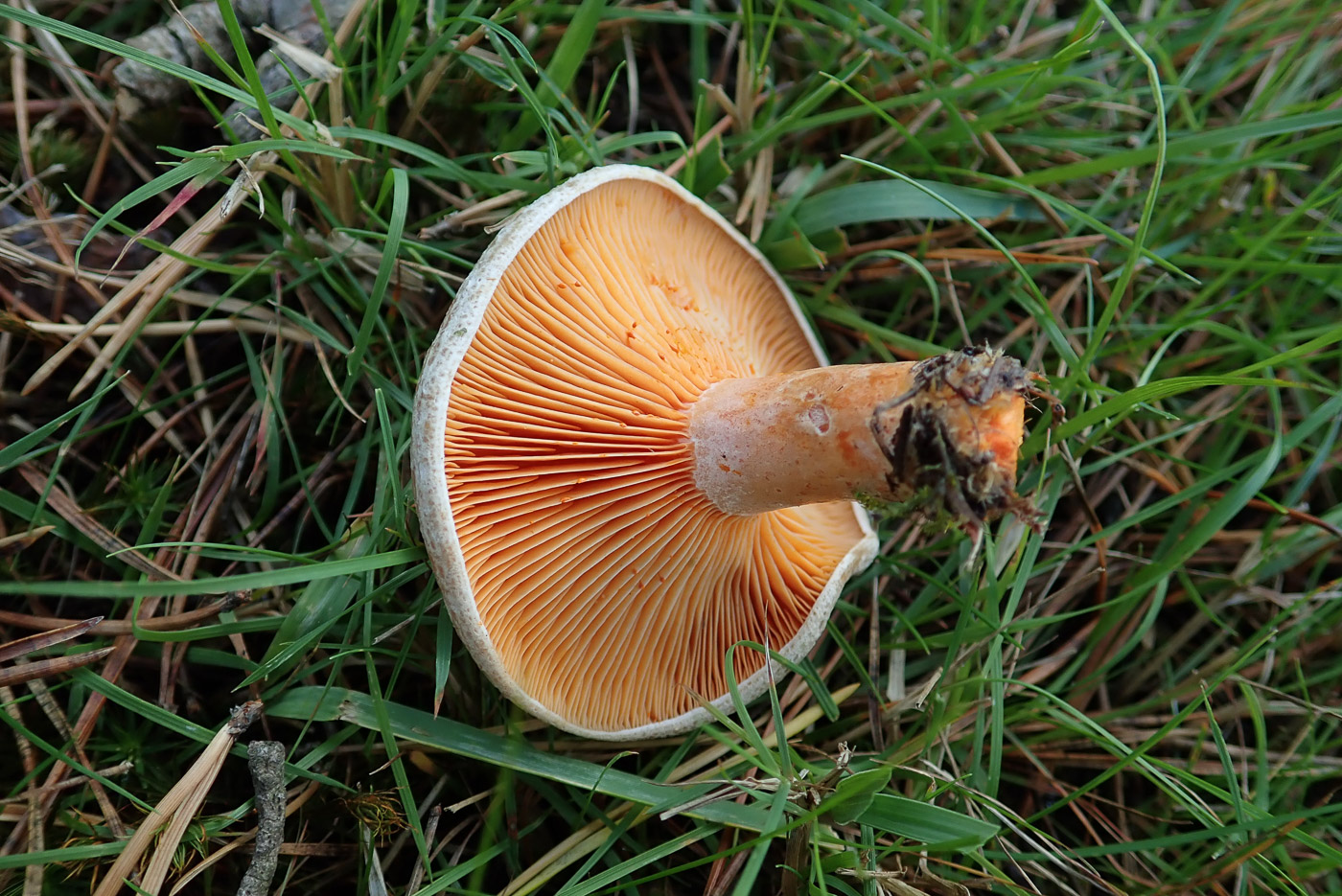 |
September 25th Lactarius deliciosus (Saffron Milkcap)
This distinctive and attractive Milkcap was found by Penny Cullington under Pine at Stoke Common - sadly only a singleton. There are just a few Milkcaps having these unusual coloured gills and milk, all of which grow under conifers of some sort. The two relatively common species are L. deterrimus (False Saffron Milkcap), found only under Spruce, and today's species found only under Pine. If you find one under Pine with gills and milk which turn wine red after a few minutes, then you probably have the much rarer L. semisanguifluus!
|
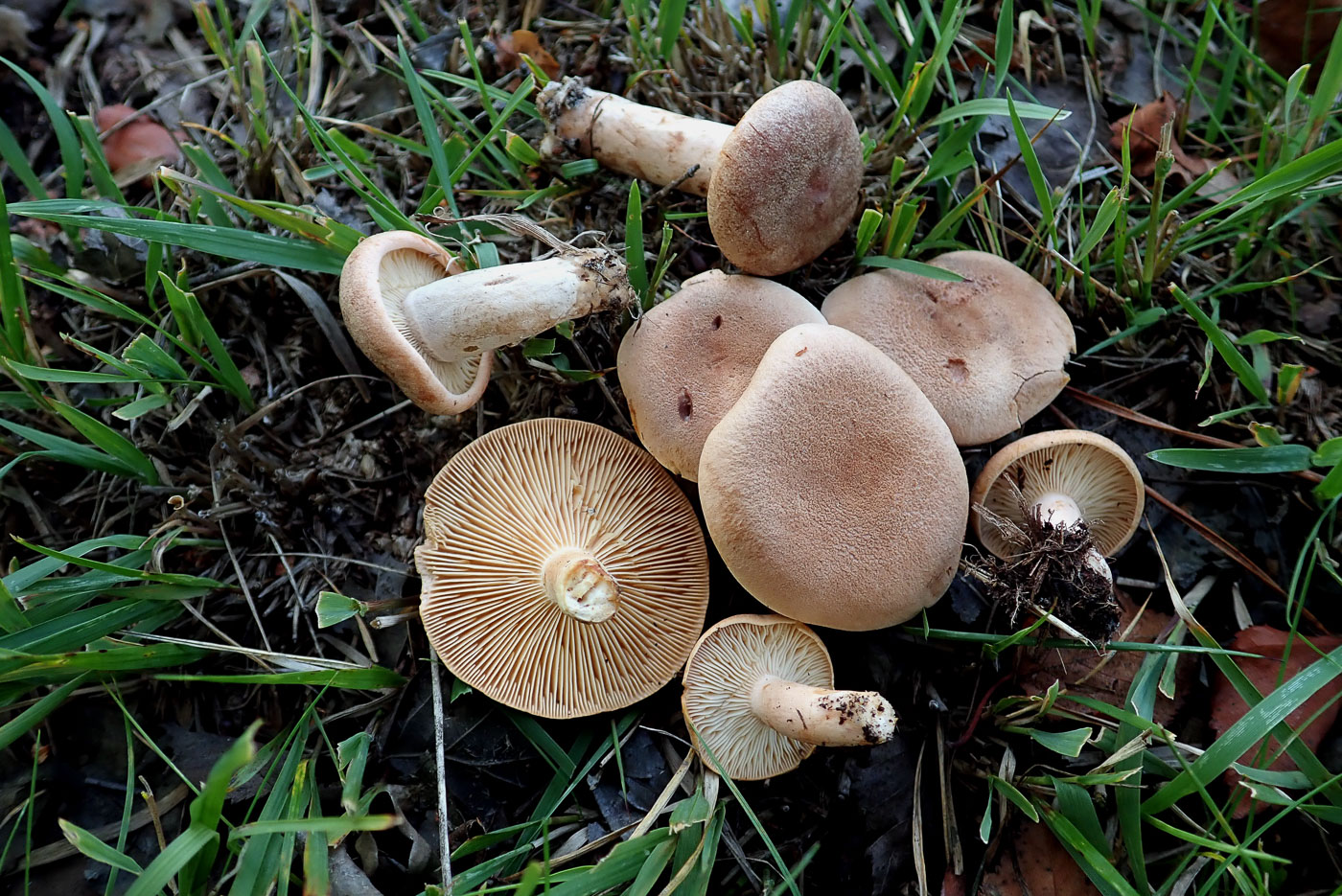 |
September 25th Lactarius helvus (Fenugreek Milkcap)
Penny Cullington found this collection under Pine and Birch at Stoke Common. Not a rare Milkcap but only found where Pine is present on acid sandy soil - somewhat unusual conditions in the Chiltern area. Fruiting was only just under way so the largest cap was only 2 cms across; in a good year it can come up in hundreds here. Once you've realised you have a Milkcap this is an easy one to name to species: it has a distinct smell of curry powder, also the 'milk' is completely colourless - a unique feature in the genus. Today's however, were too dry to produce anything which showed in a photo!
|
September 24th 2020
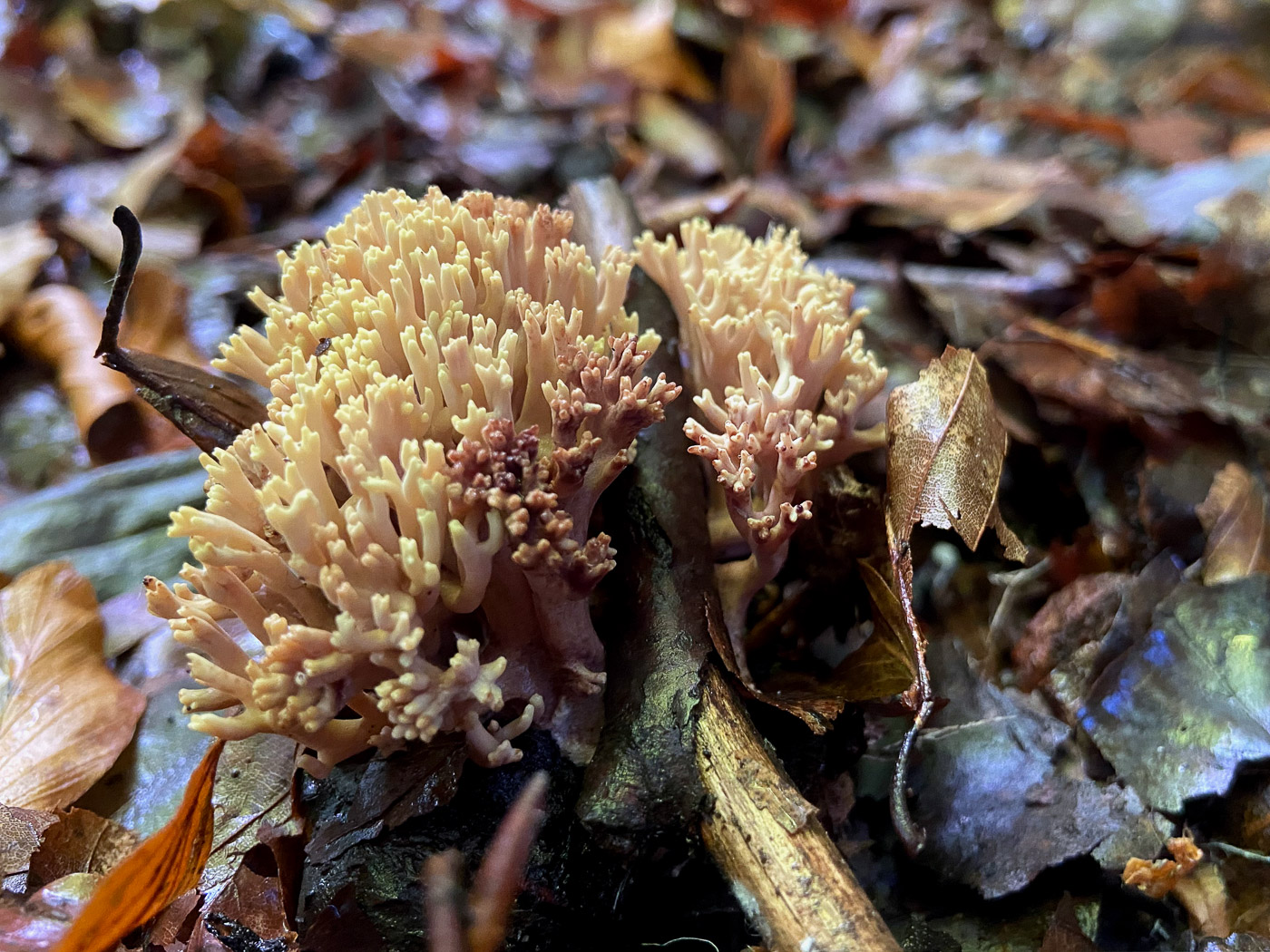
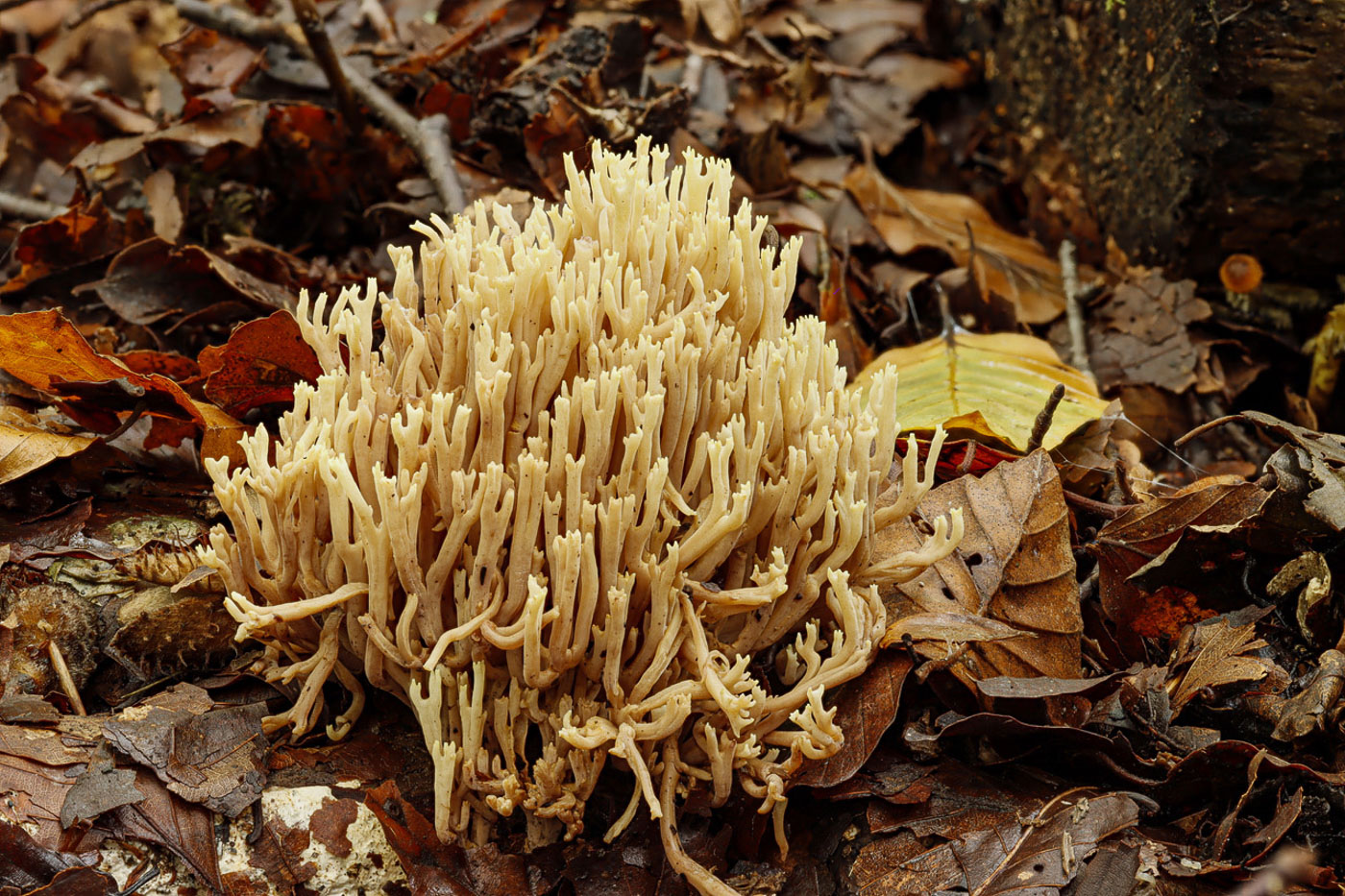 |
September 24th Ramaria stricta (Upright Coral)
Sarah Ebdon found this attractive Coral in woodland litter in Bradenham Wood. There are many species of Ramaria, all rare except for this one which is quite common and favours Beech woodland. The wine red bruising visible at the front of the cluster tends to occur as it ages or dries out. Note the digitiform branching tips to each stem. On collection one finds at the base a mass of white mycelial threads attached to the substrate. (Paul Goby took photo 2, a lovely example, in Bottom Wood on Oct 09.)
|
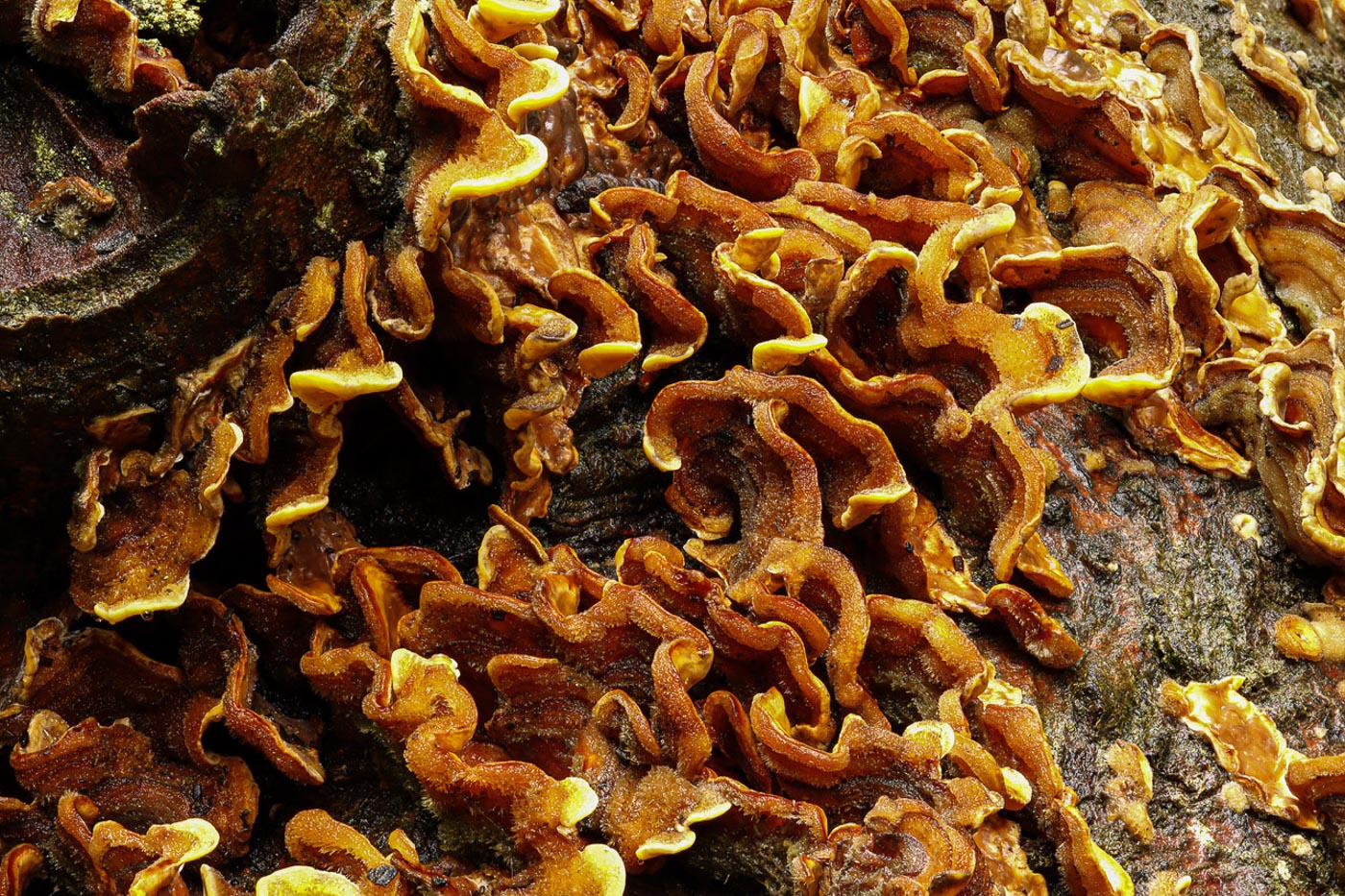 |
September 24th Stereum hirsutum (Hairy Curtain Crust)
Paul Goby found this, one of our commonest brackets on fallen deciduous wood, on Beech at Naphill Common. It grows in tightly clustered colonies of little brackets - each one up to 3 cms across, at any time of year given suitable conditions. Note the zoned top surface where when fresh one can see the finely hairy covering (here clearly visible on the top left fruit body). Note also it has an almost smooth under-surface which is more-or-less concolorous with the top - unlike the equally common Trametes versicolor (Turkeytail) with which it is frequently confused and which is cream to white with distinctly visible pores underneath.
|
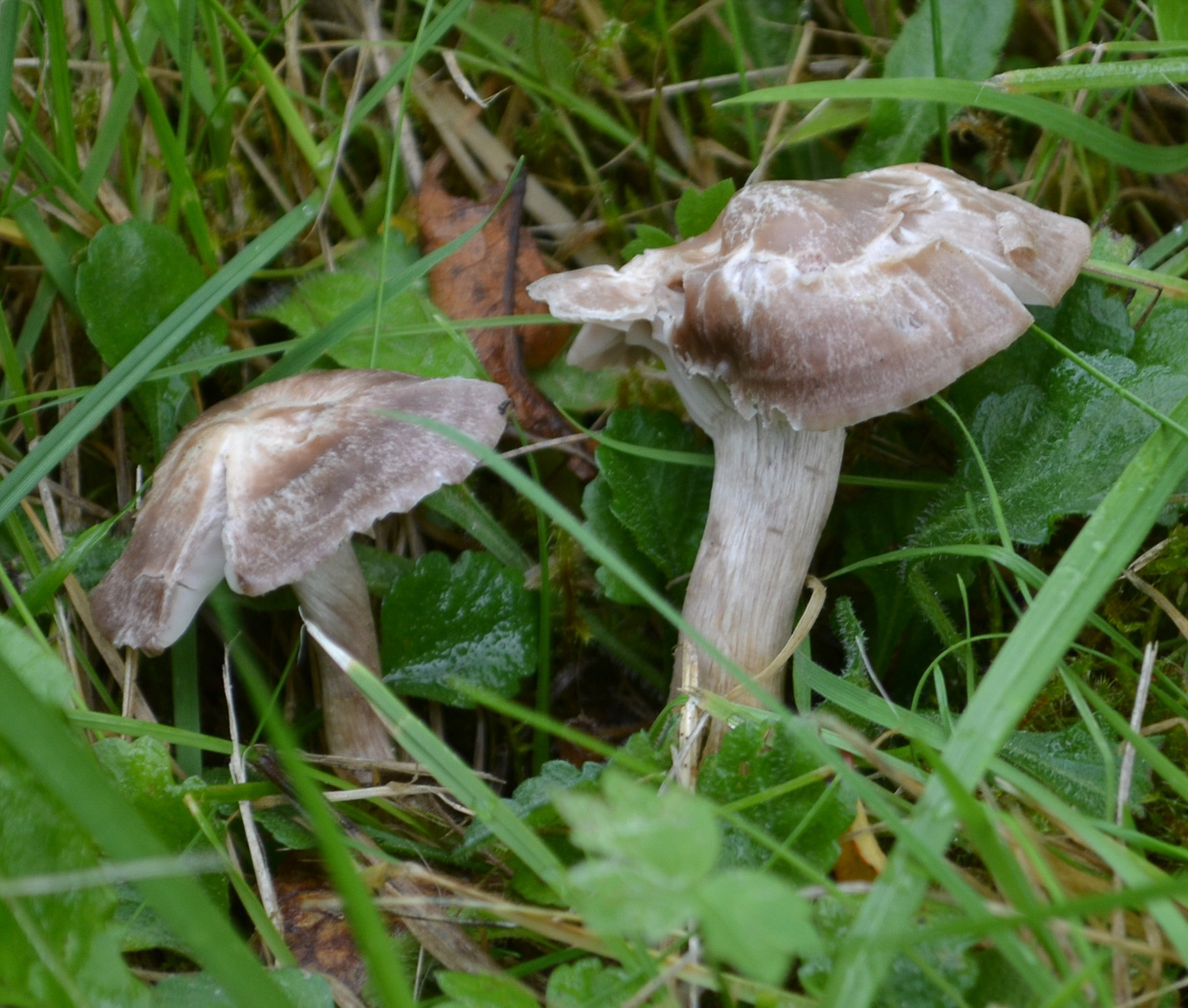
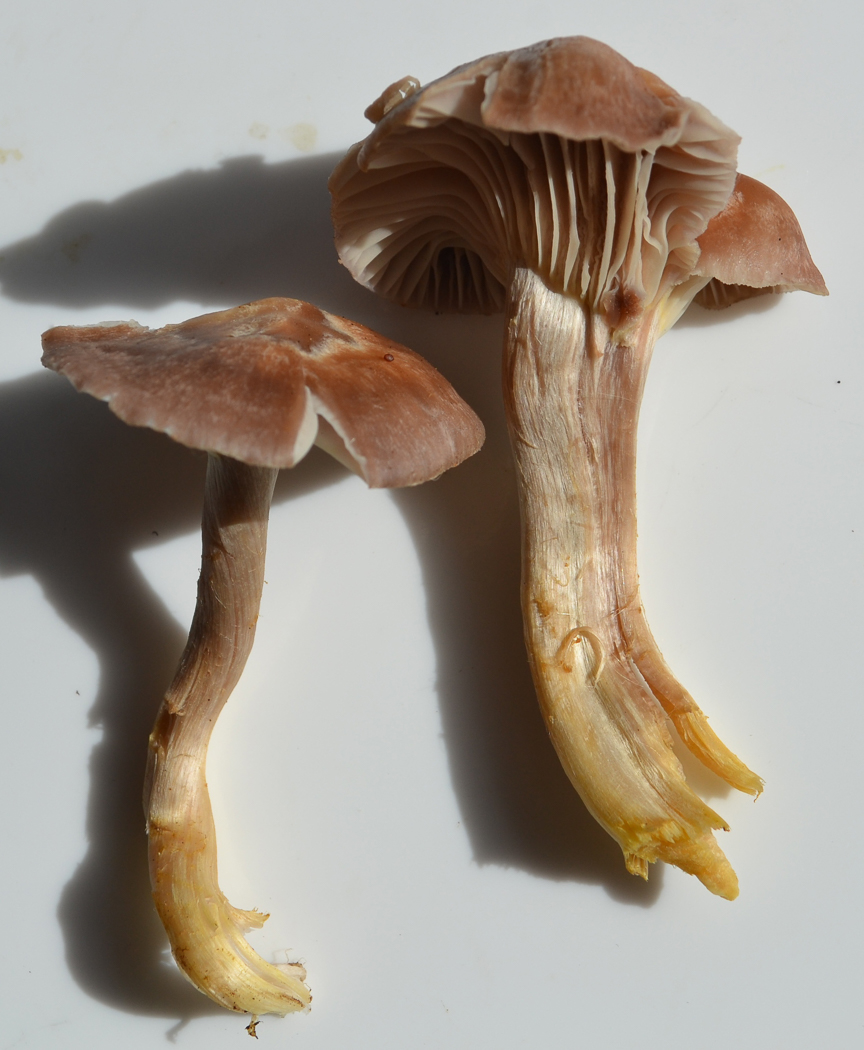 |
September 24th Hygrocybe flavipes (Yellow Foot Waxcap)
This rare Waxcap was found by Tony Marshall in unimproved grass in a churchyard near Gt. Missenden. Churchyards are good places to look for Waxcaps together with other grassland loving genera. We have just one previous county record for this particular species. There are a few greyish capped Waxcaps, all very rare except for H. irrigata (Slimy Waxcap) - easily recognised because the stem is so slimy one can hardly pick it up! No other Waxcap has a yellow base to the stem (as seen in the second photo), note also the decurrent (sloping gills) and dry stem though the cap is sticky.
|
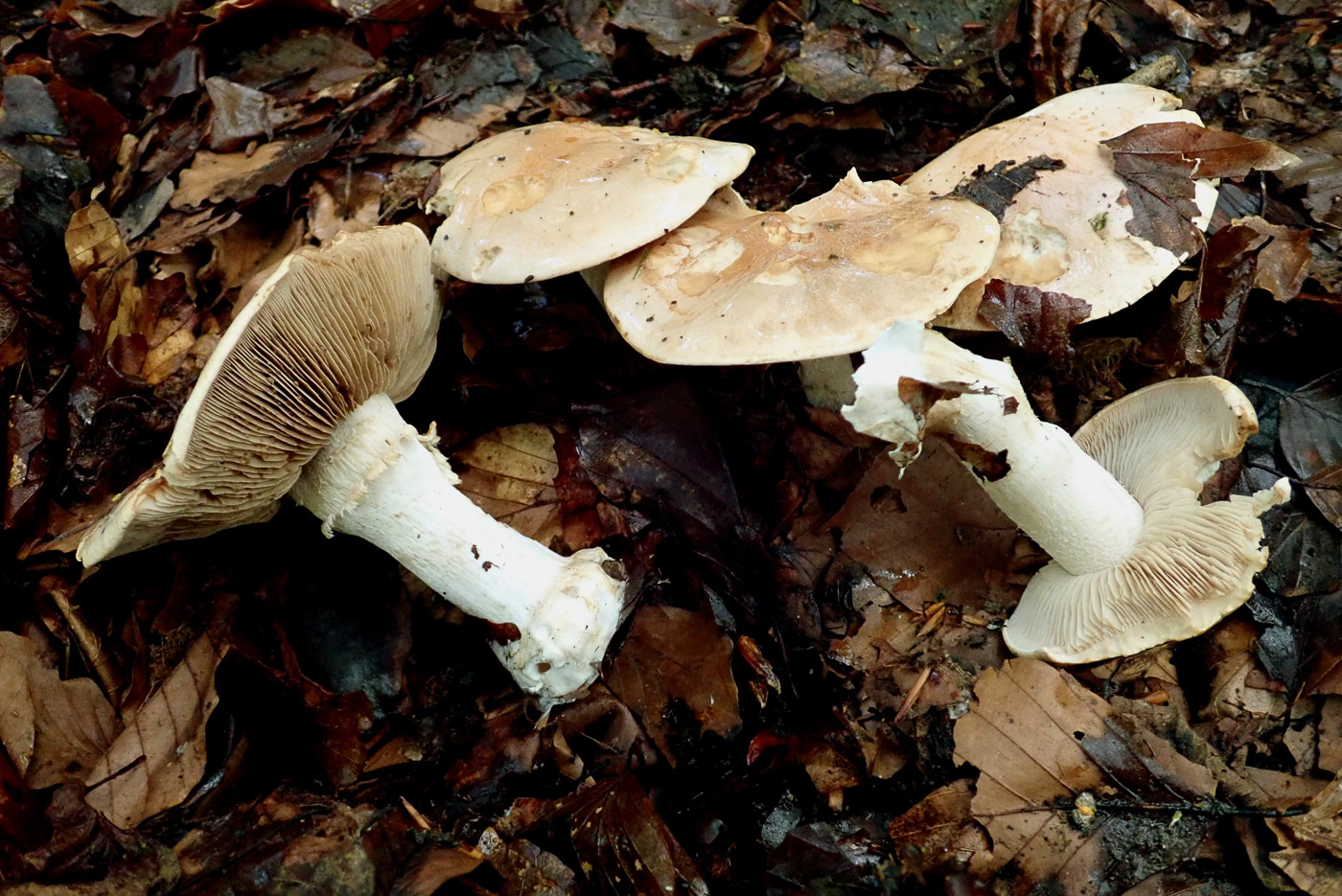
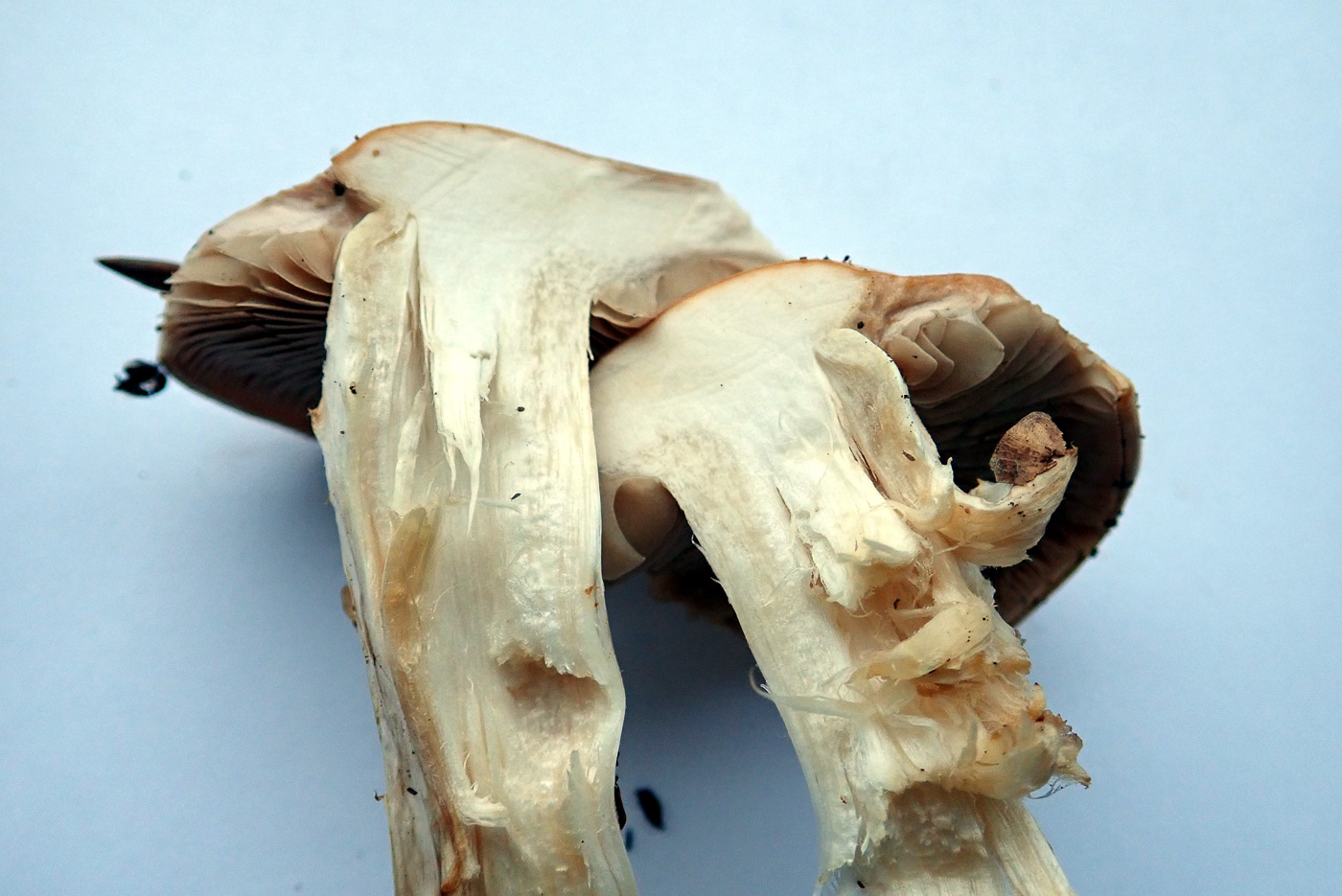 |
September 24th Hebeloma sinapisans (Bitter Poisonpie) 
Our first photo of a member of this large and tricky genus, this was found under Beech at Mousells Wood by Penny Cullington. It is typical of its genus, very few of which can or should be named in the field and all of which are mycorrhizal with trees. They have sticky, smooth, pale to darker brown caps and white stems, often with a distinct smell of radish (though a few have a sweet smell). The species here is a large one with caps up to 10 cm across or more, it also has a bulbous stem base (seen in the LH specimen) and when sliced open there is a hanging flange (wick) at the top of the stem.
|
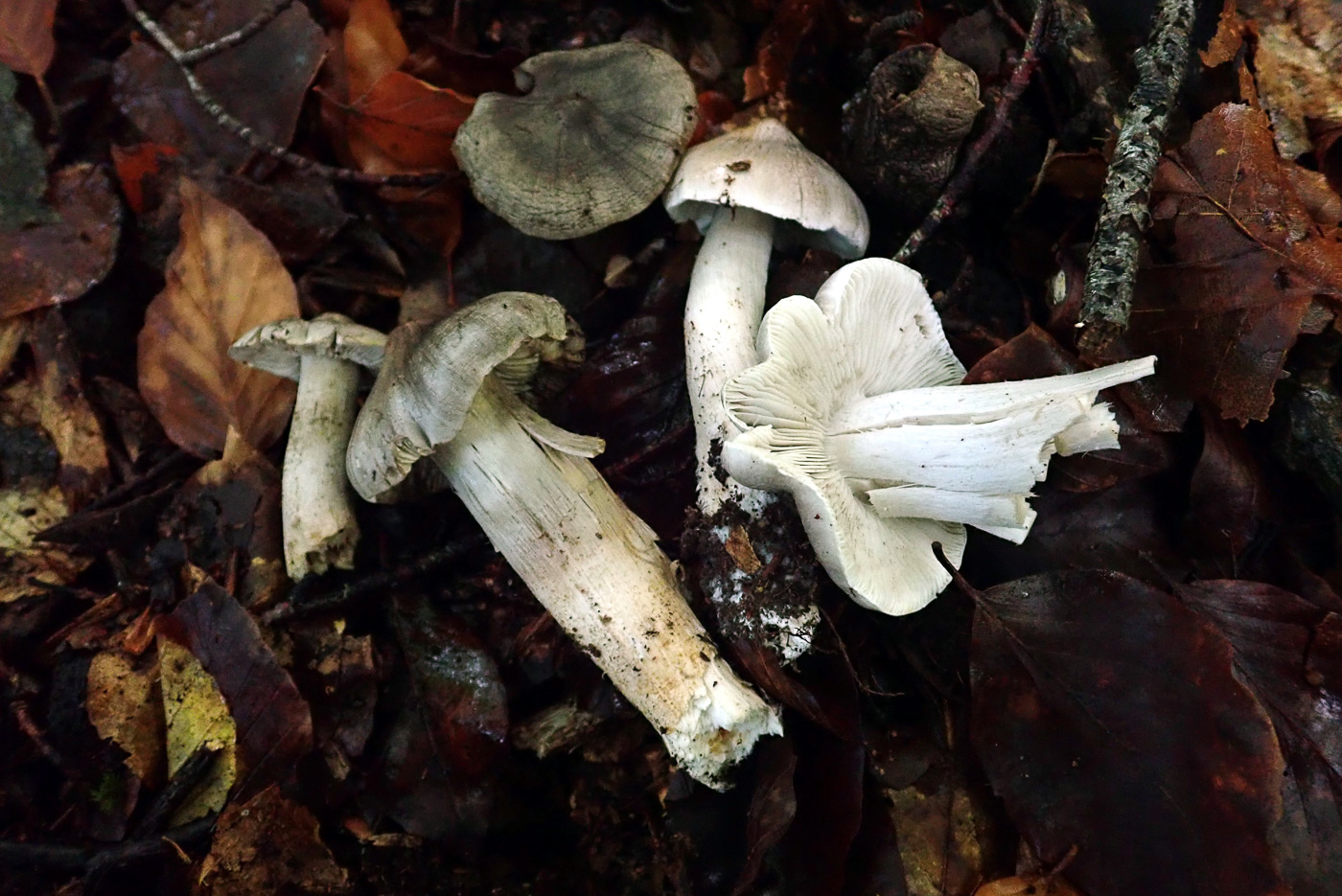
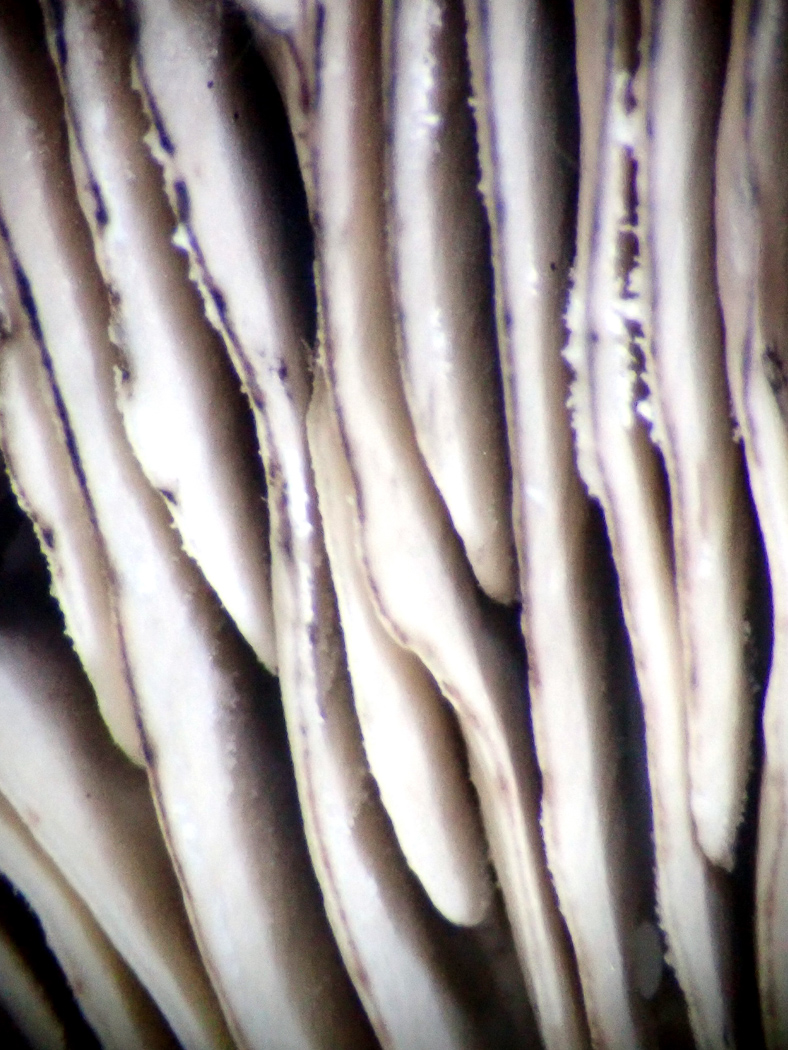 |
September 24th Tricholoma sciodes (Beech Knight)
Penny Cullington found this collection under Beech (with which it is host specific) in Mousells Wood. An occasional though not uncommon species given the frequency of Beech in the Chilterns, it is one of quite a few grey capped Knights with which it can be confused. Note the slight umbo (central bump) and smooth but slightly streaky surface on the cap (also features of T. virgatum which, however, frequents conifer or birch, but not Beech), also with care one can see a black edge to the gills in more mature specimens (see detailed photo) not found in T. virgatum.
|
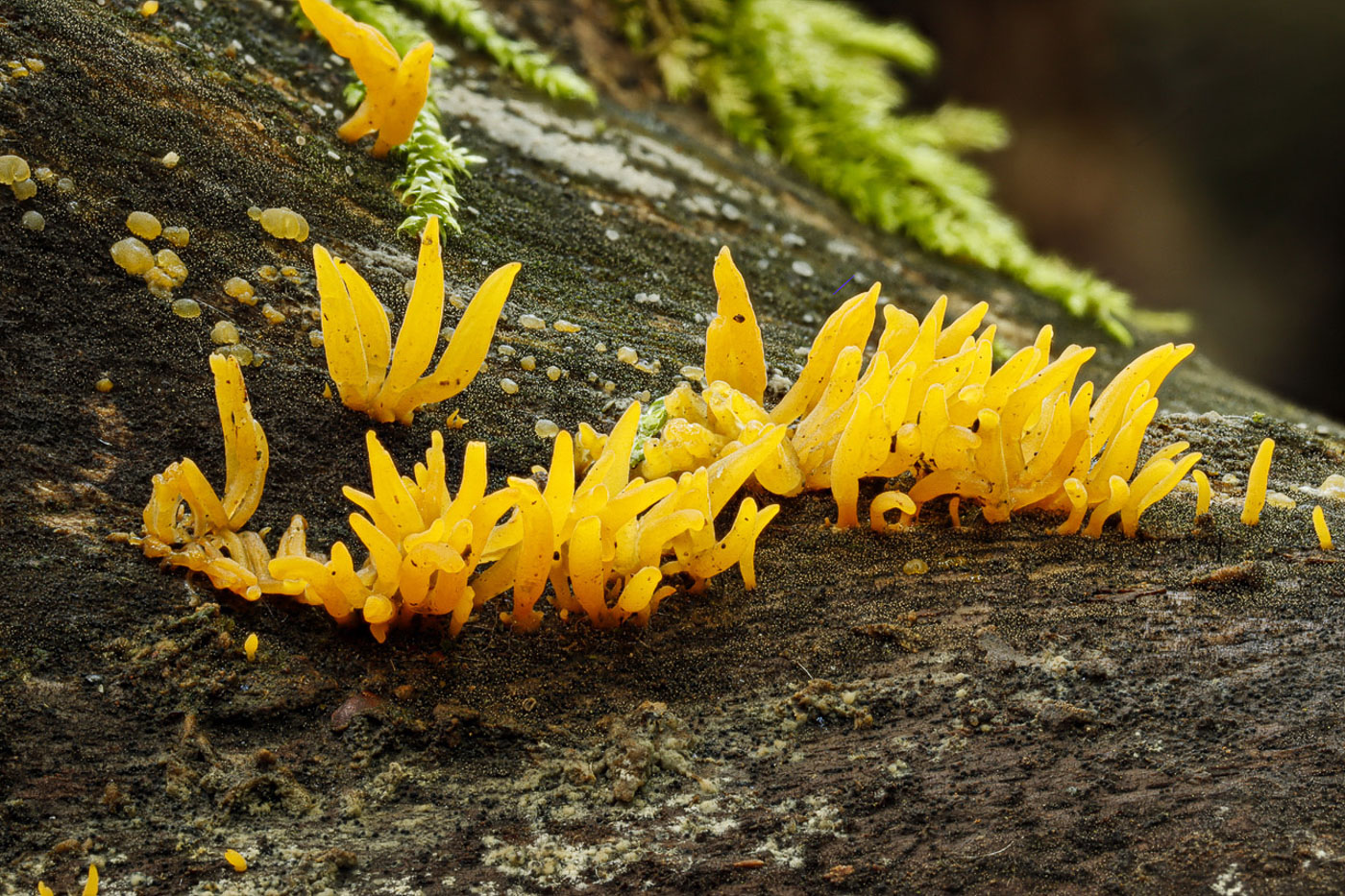 |
September 24th Calocera cornea (Small Stagshorn)
Paul Goby found this attractive little species on a fallen Beech trunk at Naphill Common. Not at all rare but often overlooked or misnamed, it is classified as one of the 'Jelly' fungi and never exceeds 1cm in height. It occurs most frequently on Beech and has a gelatinous feel when fresh, as here, but dries out to a darker orange. The name cornea refers to its slight curved shape as in cows' horns.
|
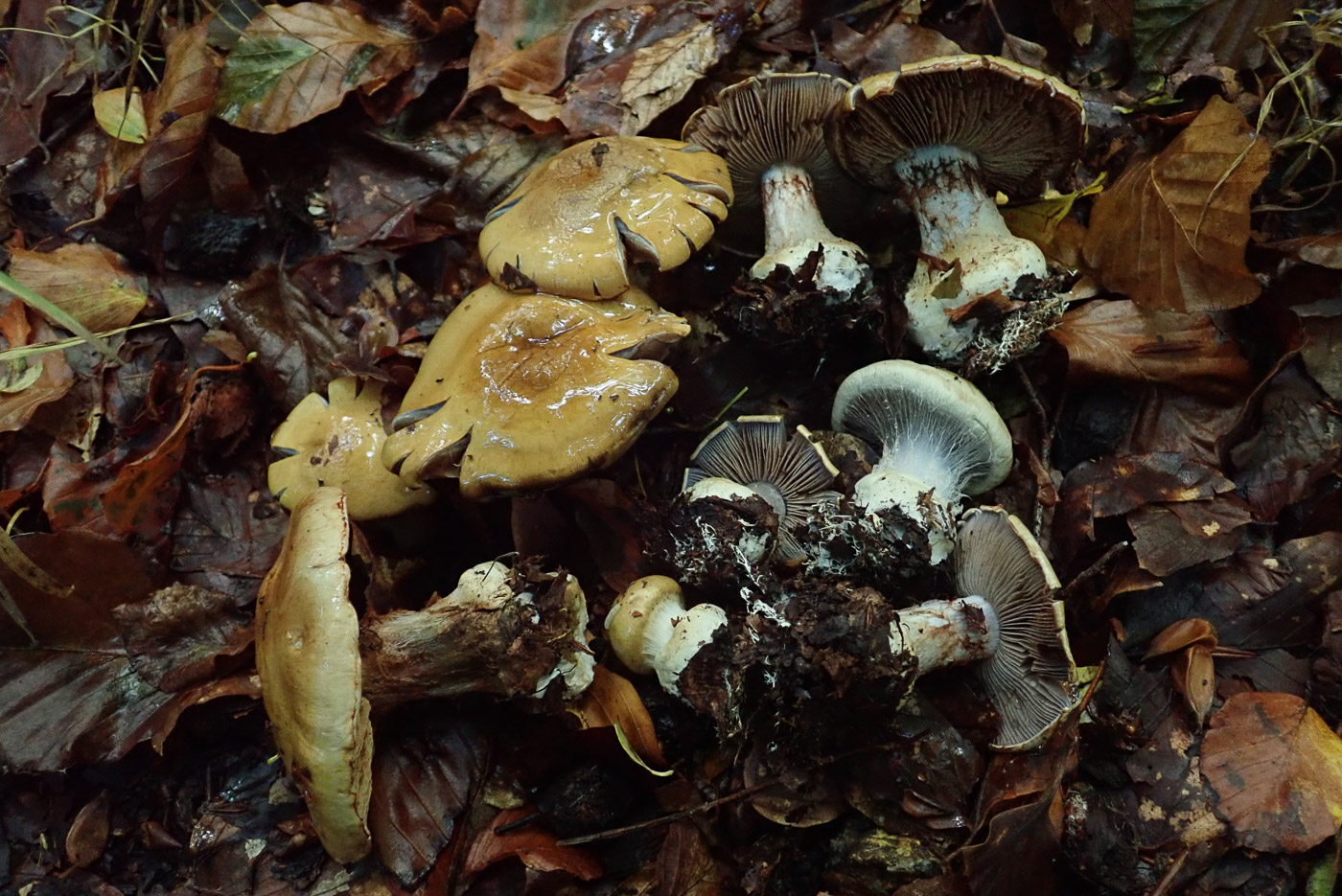
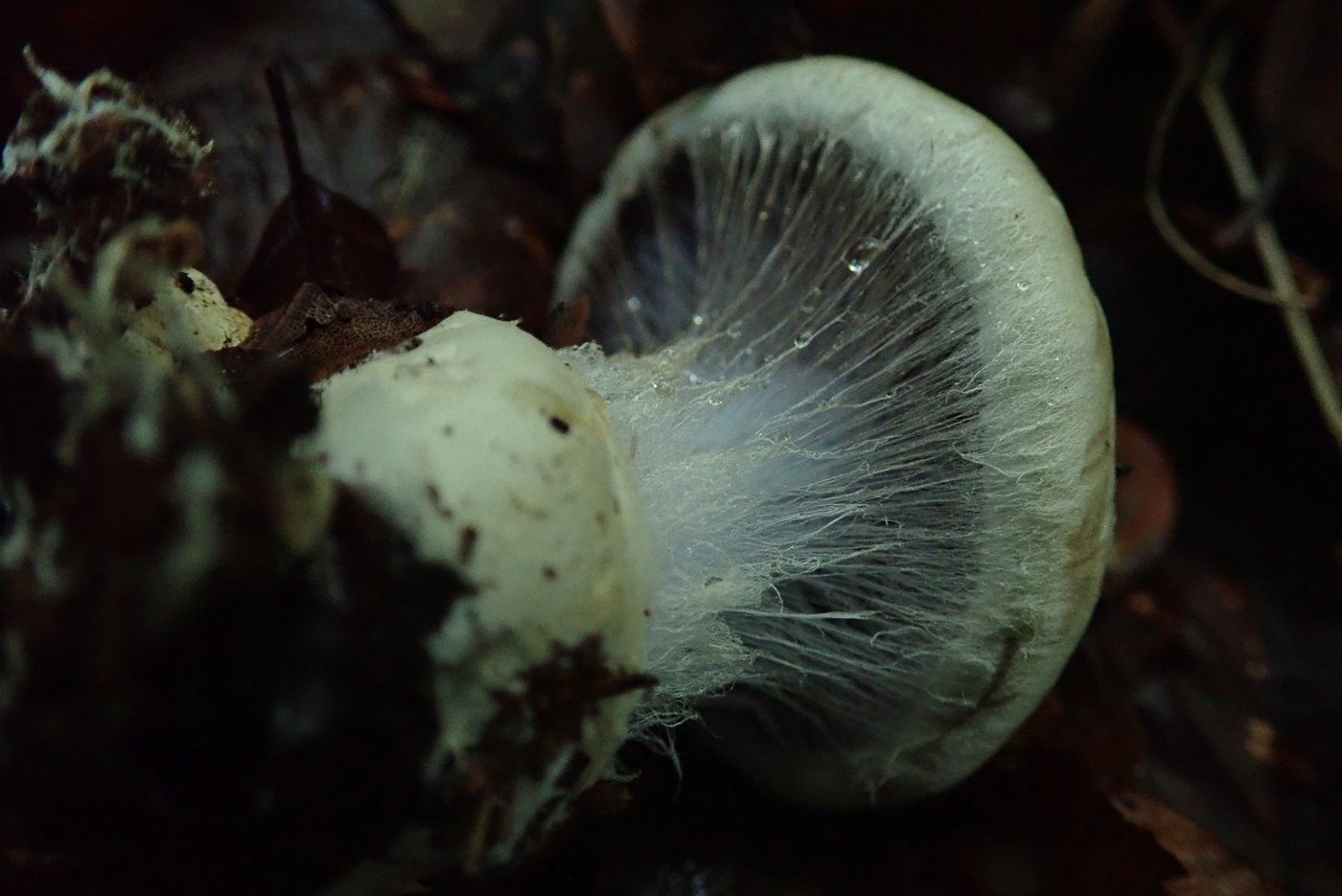

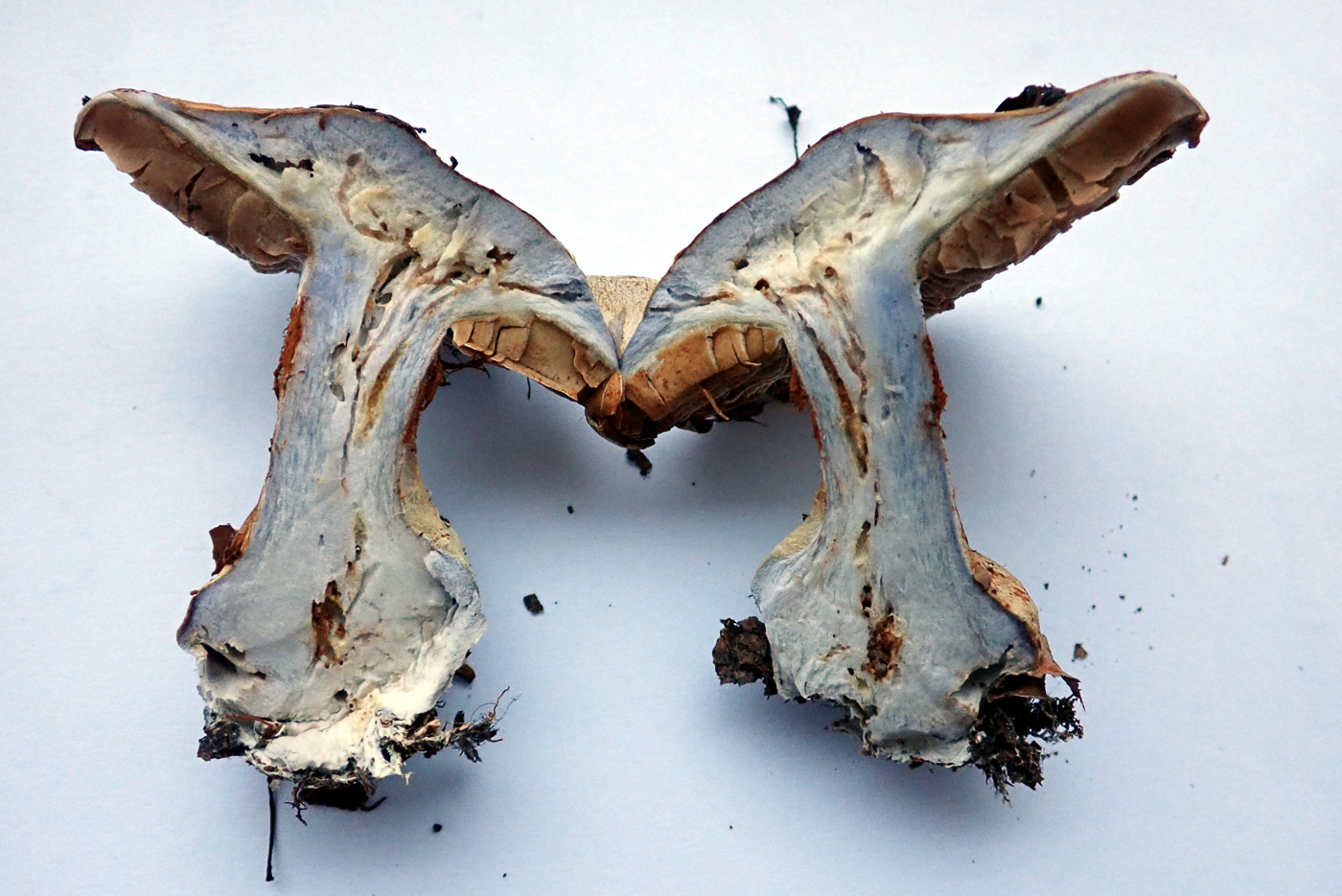 |
September 24th Cortinarius amoenolens (Blue Webcap)
This collection was found under Beech in Mousells Wood by Penny Cullington. One of two Webcaps from section Phlegmacium to be fruiting under Beech here today, this species is not a rarity but still exciting to find. Displaying many characters typical of these particular Webcaps (see notes under C. caesiocortinatus) it has a brown cap with violaceous tinted gills when young (though later these turn rusty brown), but gets its common name from the flesh inside the stem which is also violaceous (seen here in a mature specimen).
|
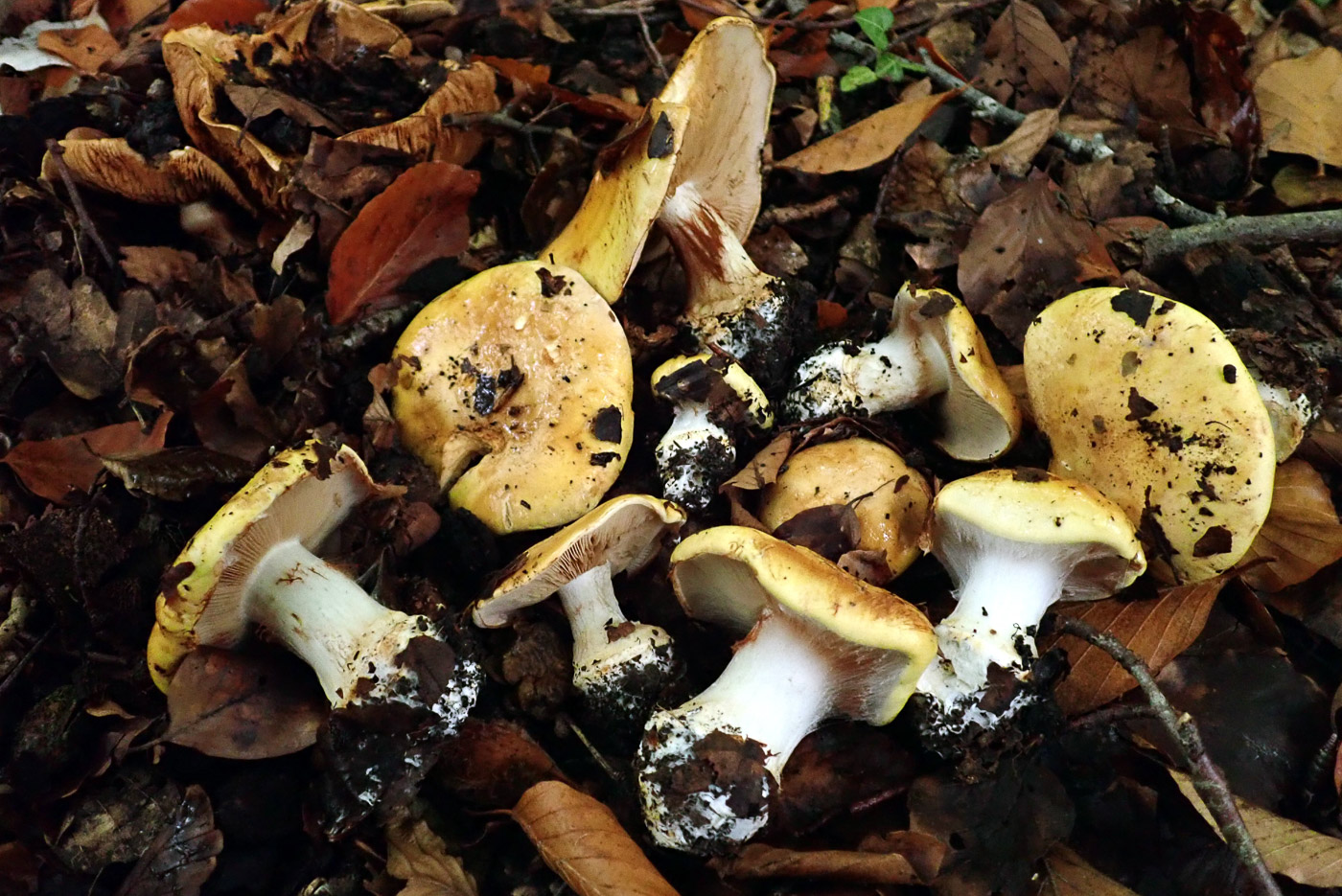

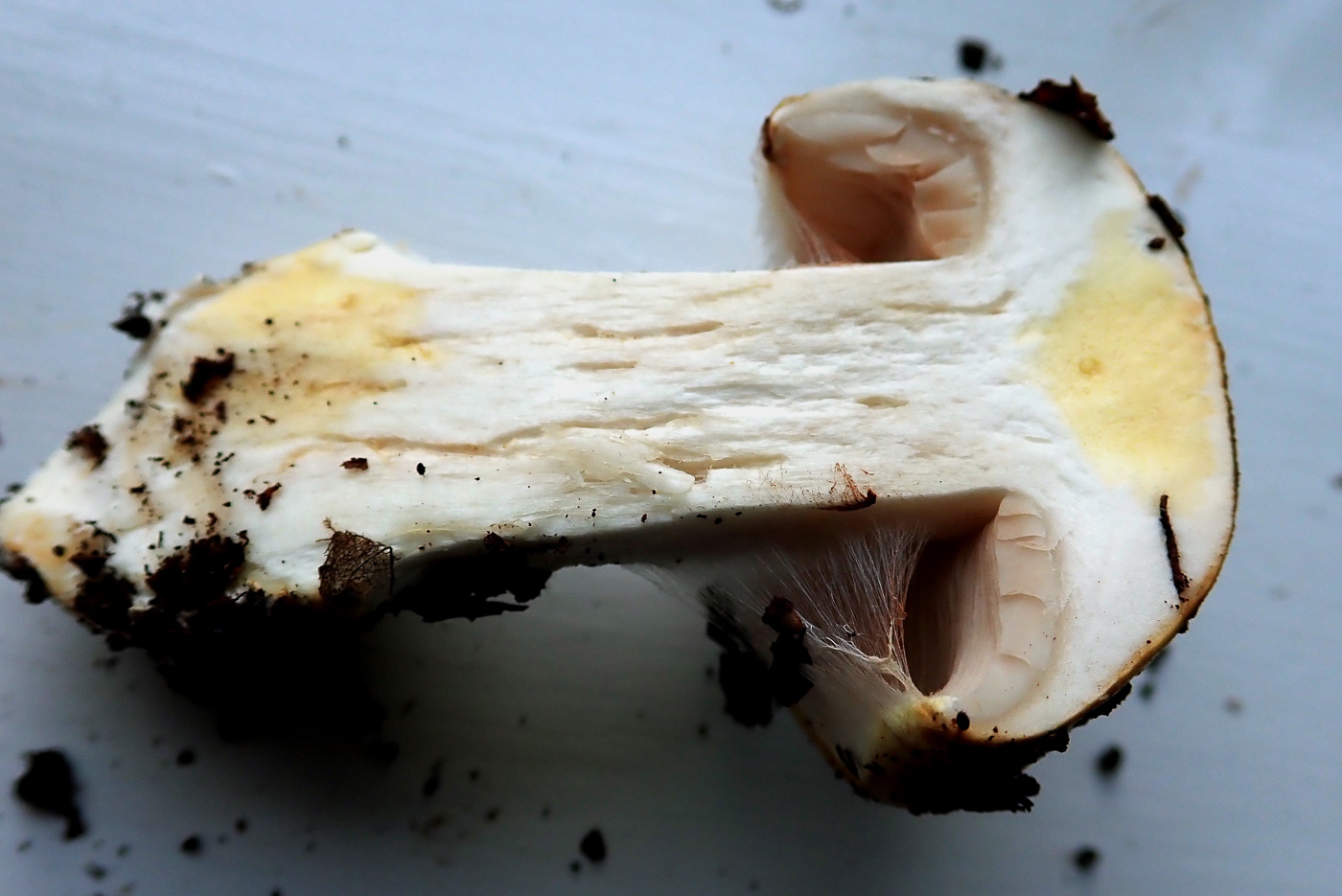 |
September 24th Cortinarius caesiocortinatus (No common name)
This stunning collection was the find of the day for Penny Cullington at Mousells Wood under Beech. This typical Chiltern Beech woodland has produced several exciting species in the last few years, particularly from the genus Cortinarius section Phlegmacium to which this species belongs. Identification, with the aid of a scope  and some help from colleague Mario Tortelli, was confirmed by the yellow KOH reaction of the flesh and the spore shape. Note the wide platform-like volva at the base and fine cortina (cobwebby mesh) in the young specimen, both features typical of this section of an enormous genus together with the sticky cap. New to the county with only a few UK records. and some help from colleague Mario Tortelli, was confirmed by the yellow KOH reaction of the flesh and the spore shape. Note the wide platform-like volva at the base and fine cortina (cobwebby mesh) in the young specimen, both features typical of this section of an enormous genus together with the sticky cap. New to the county with only a few UK records.
|
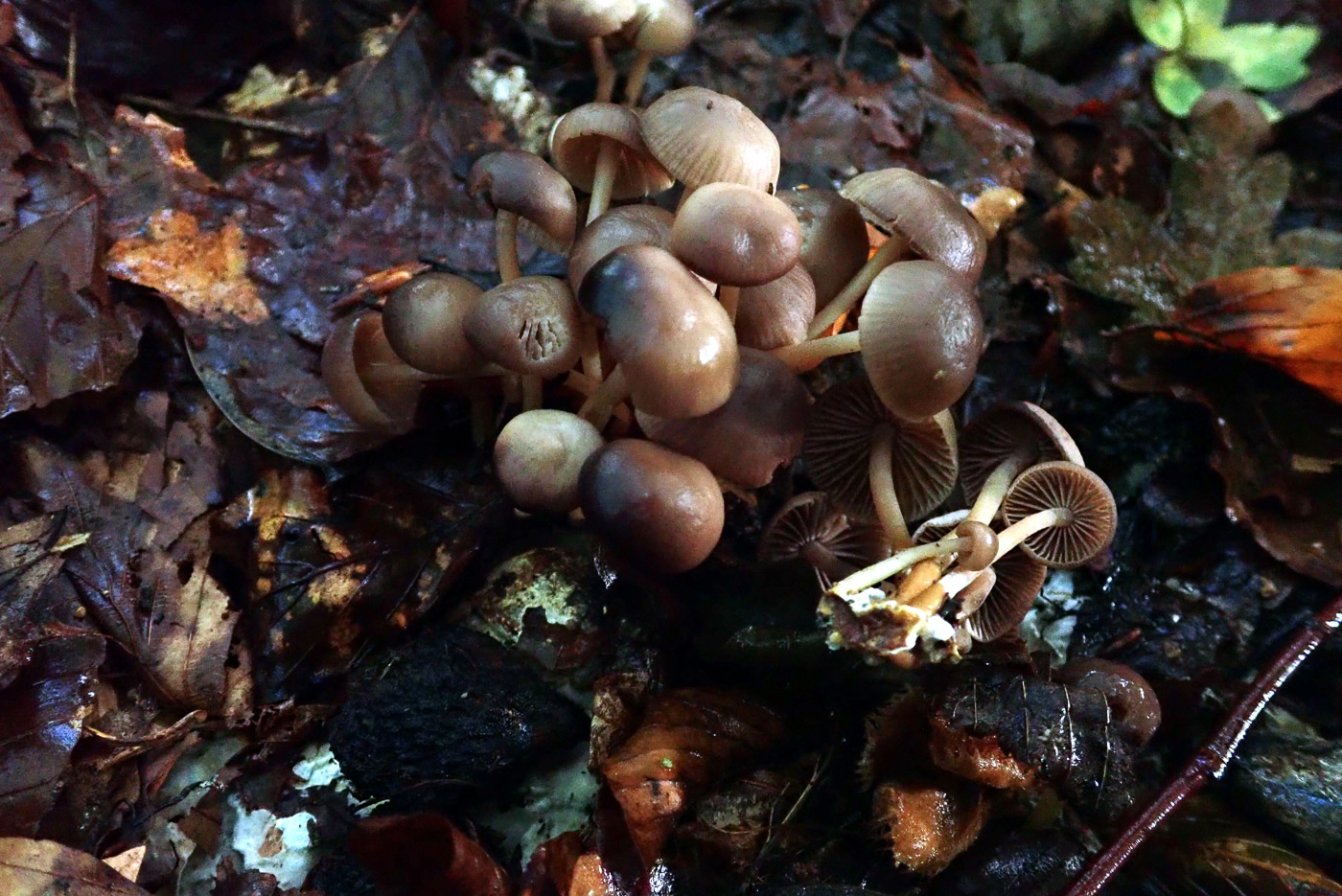 |
September 24th Marasmius wynnei (Pearly Parachute)
Penny Cullington found this cluster of young fruit bodies just emerging in Beech litter in Mousells Wood. An occasional species, it is superficially similar in appearance to the genus Mycena (the Bonnets) and has a strange smell not unlike mothballs. The cap colour tends to fade to almost white as it expands and dries out.
|
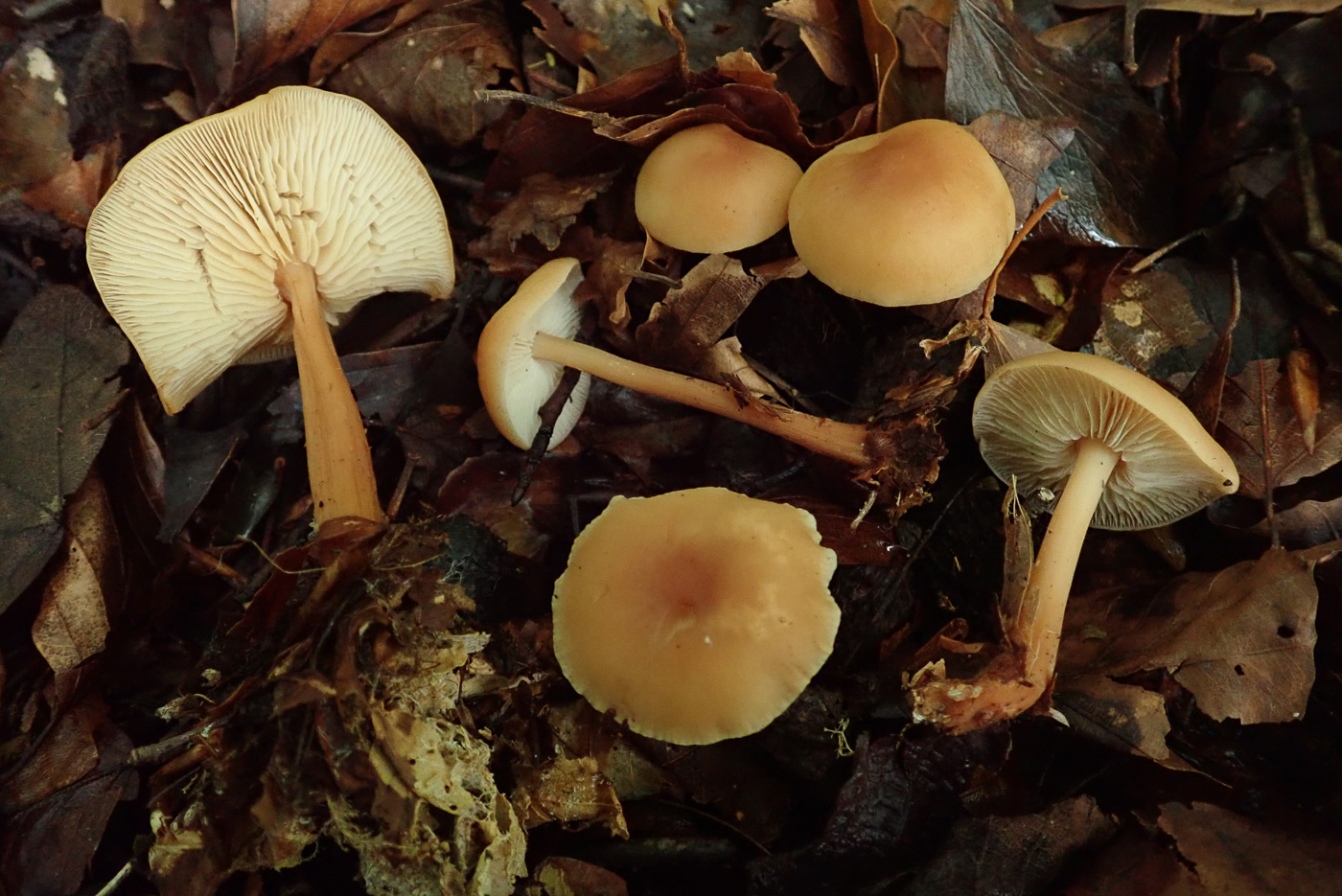 |
September 24th Gymnopus dryophilus (Russett Toughshank)
Previously in the genus Collybia, this very common species of the woodland floor was found by Penny Cullington in Mousells Wood. It is usually one of the first woodland mushrooms to appear in Autumn, often in large numbers, but has been conspicuous by its absence in recent weeks. It has a soft rather flexible feel to it, also stem is hollow.
|
 |
September 24th Pseudoinonotus dryadeus (Oak Bracket)
Previously in the genus Inonotus, this substantial and occasional species was found by Sarah Ebdon in Lacey Green growing on living Oak, its usual host (though it can rarely occur on Sweet Chestnut). A perennial species, its fine pores below (not visible here) are greyish white and whilst at the growing stage the coloured droplets seen here are typical of the species.
|
September 23rd 2020
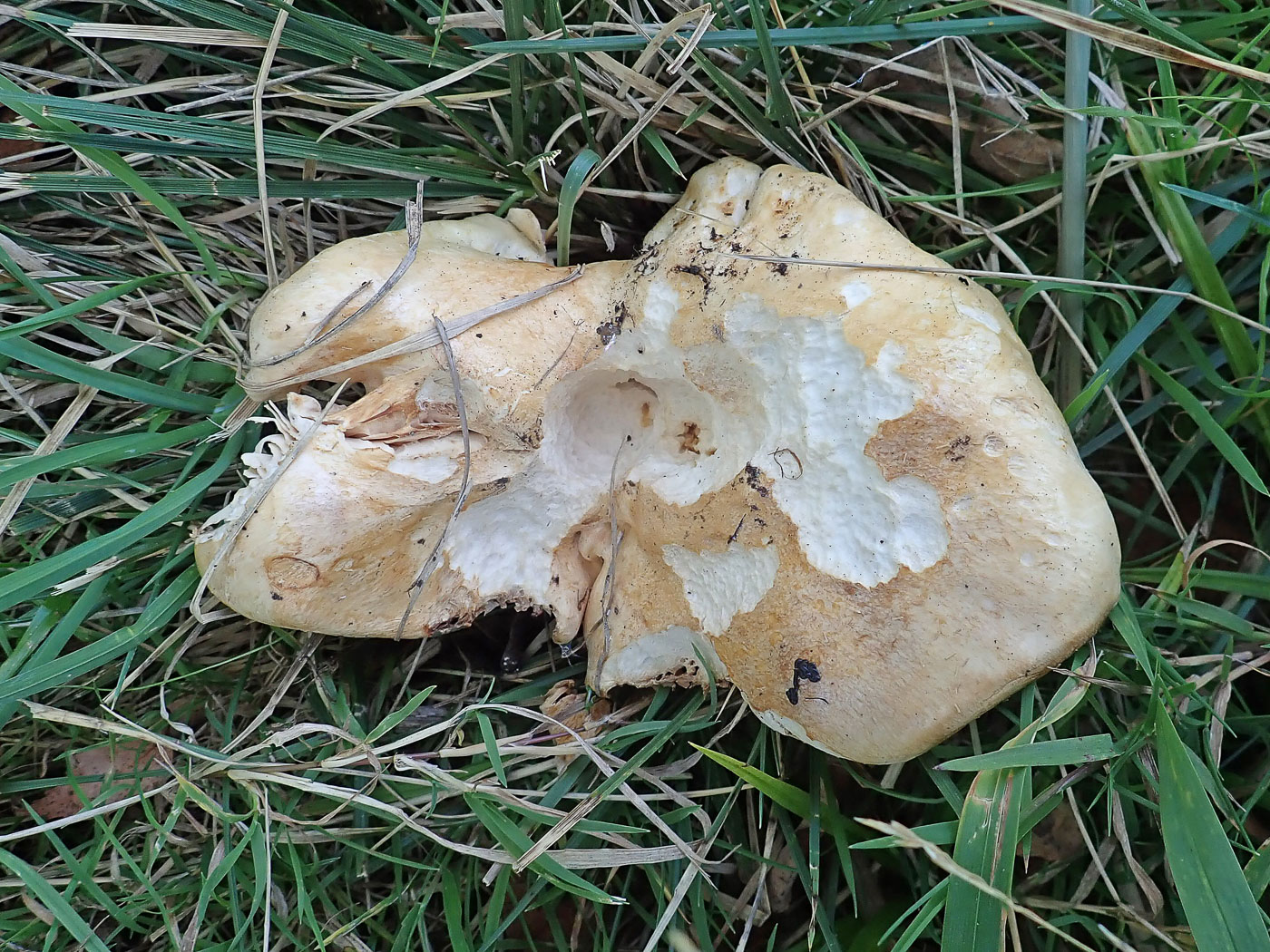
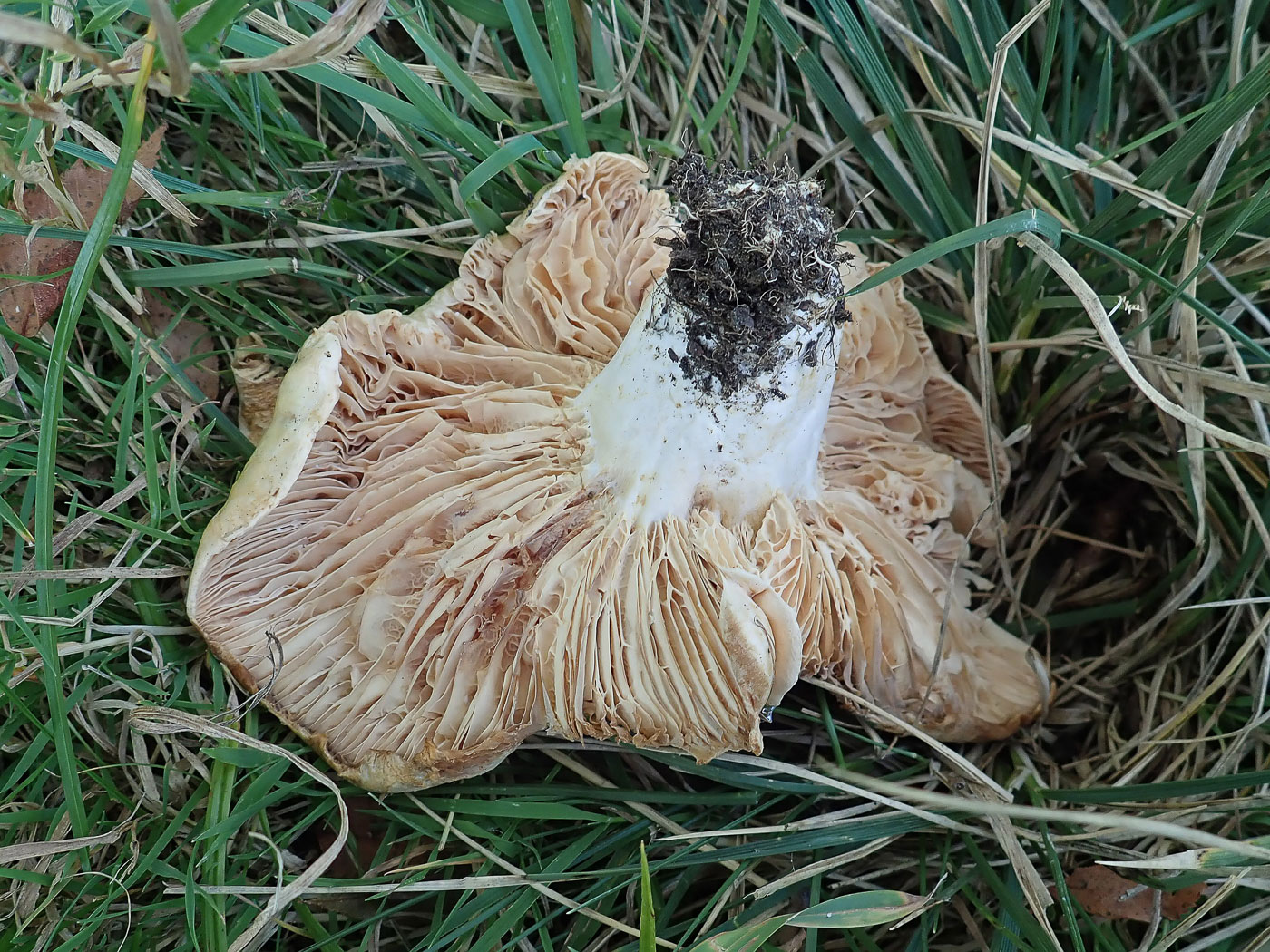 |
September 23rd Lactarius acerrimus (Two spored Milkcap)
This quite rare Milkcap was found by Joanna Dodsworth under Oak at Wotton Park Estate (photo and microscopy Derek Schafer). Nothing much to write home about to look at, the significant features of the species lie below and within! Turn it over to reveal the distinctive distorted and anastomosing (conjoining) gills, rather short stem and a smell of stewed apples! With a scope one notices larger spores than normal for the genus, this brought about by each basidium (spore producing cell) developing just two spores rather than the normal four, a unique feature within the genus. (NB do not infer from the common name that each fruit body only produces two spores! There are thousands of basidia on each gill!)
|
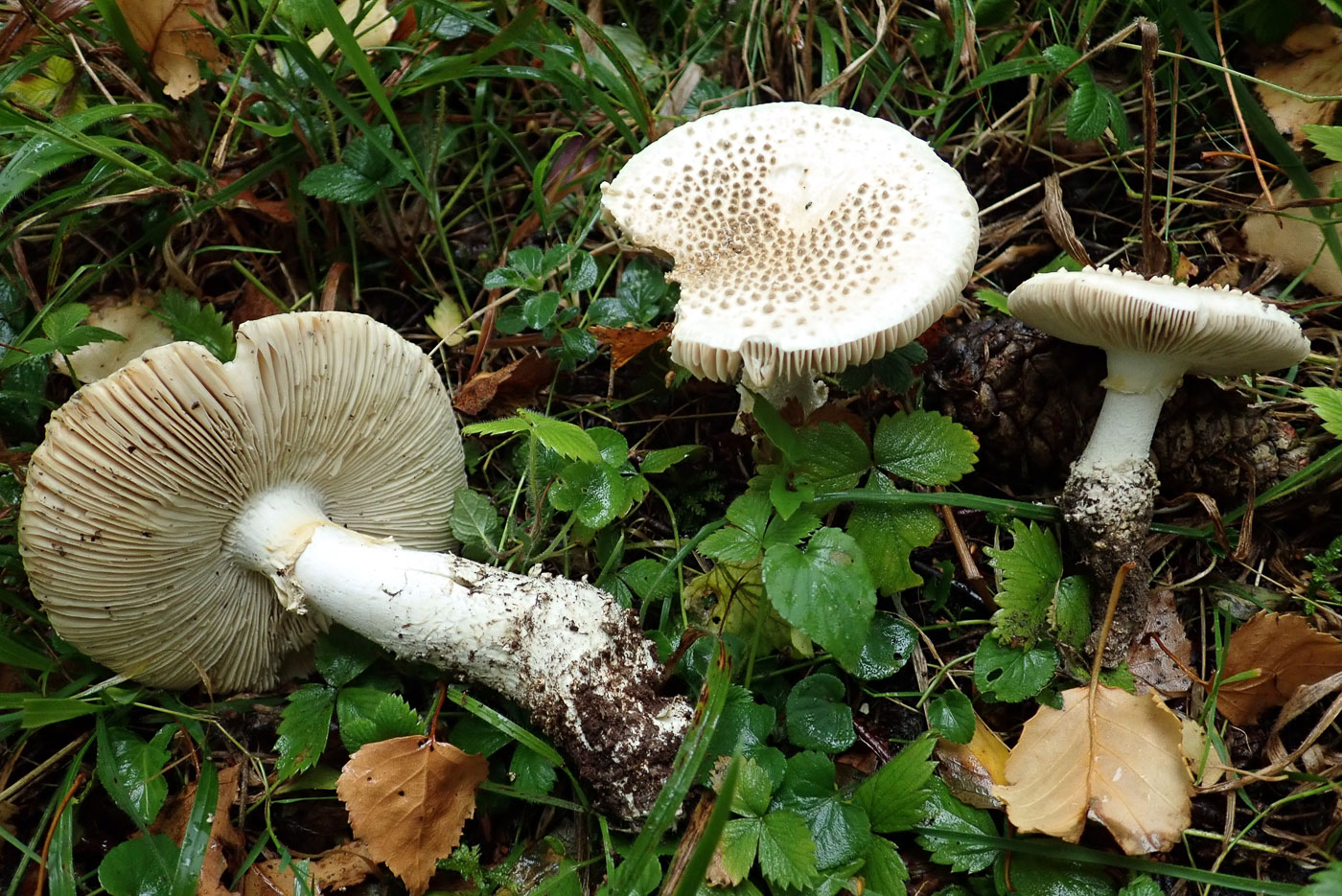
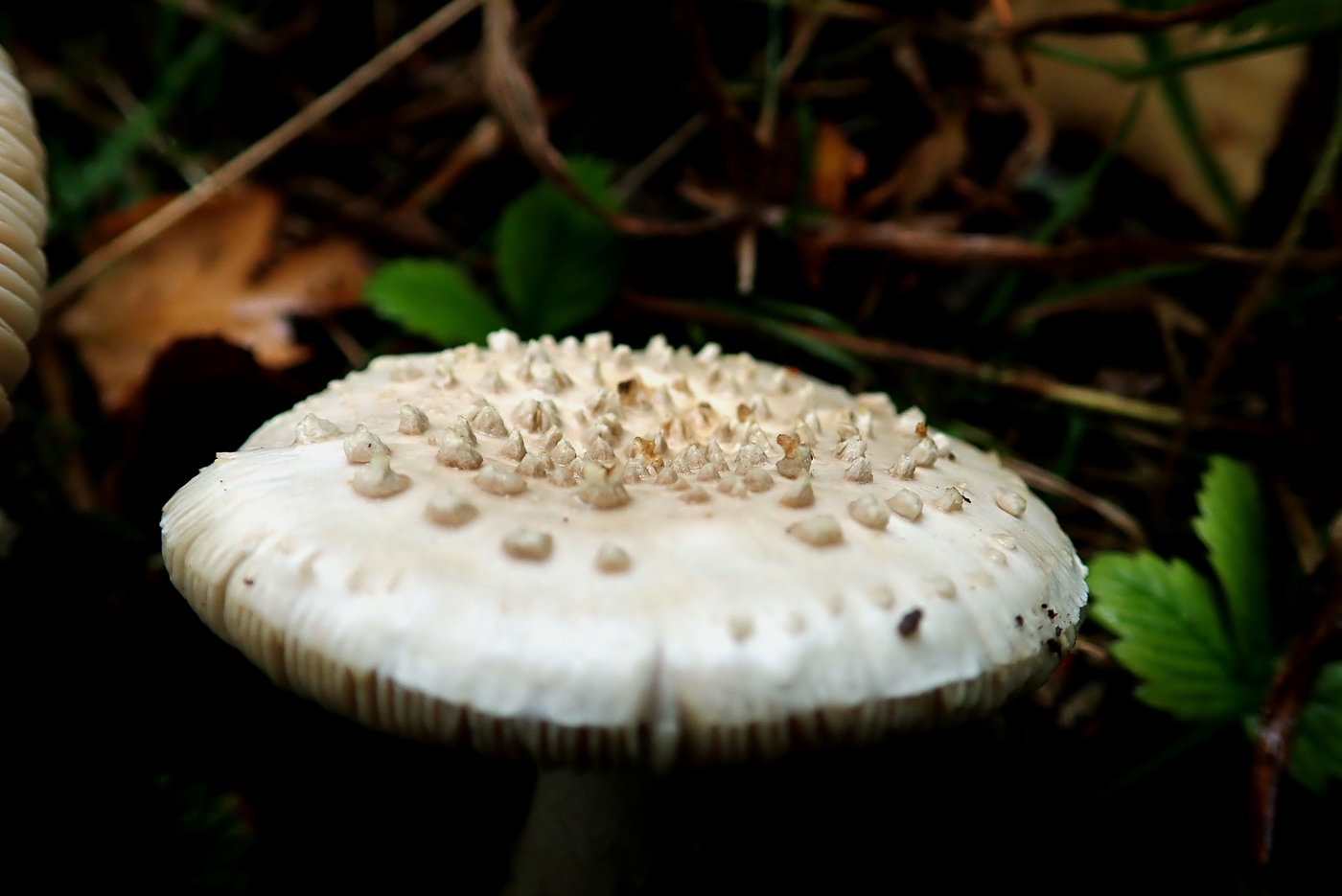 |
September 23rd Amanita echinocephala (Solitary Amanita)
Yet another Amanita for our growing list, these three specimens were found (as singletons) by Penny Cullington at Pulpit Hill in very chalky soil - one under Beech and two under Birch. An uncommon species, the Latin name describes the almost prickly scale-like veil patches on the cap which are a diagnostic feature (see second photo) and separate it from, for instance, A. citrina. The cream gills are distinctive also, as are the rather ragged volva (very hard to extricate without damage) and yellowish ring on the stem. The name, however, is in the process of changing to A. solitaria, reflecting the species' solitary habit.
|
September 22nd 2020
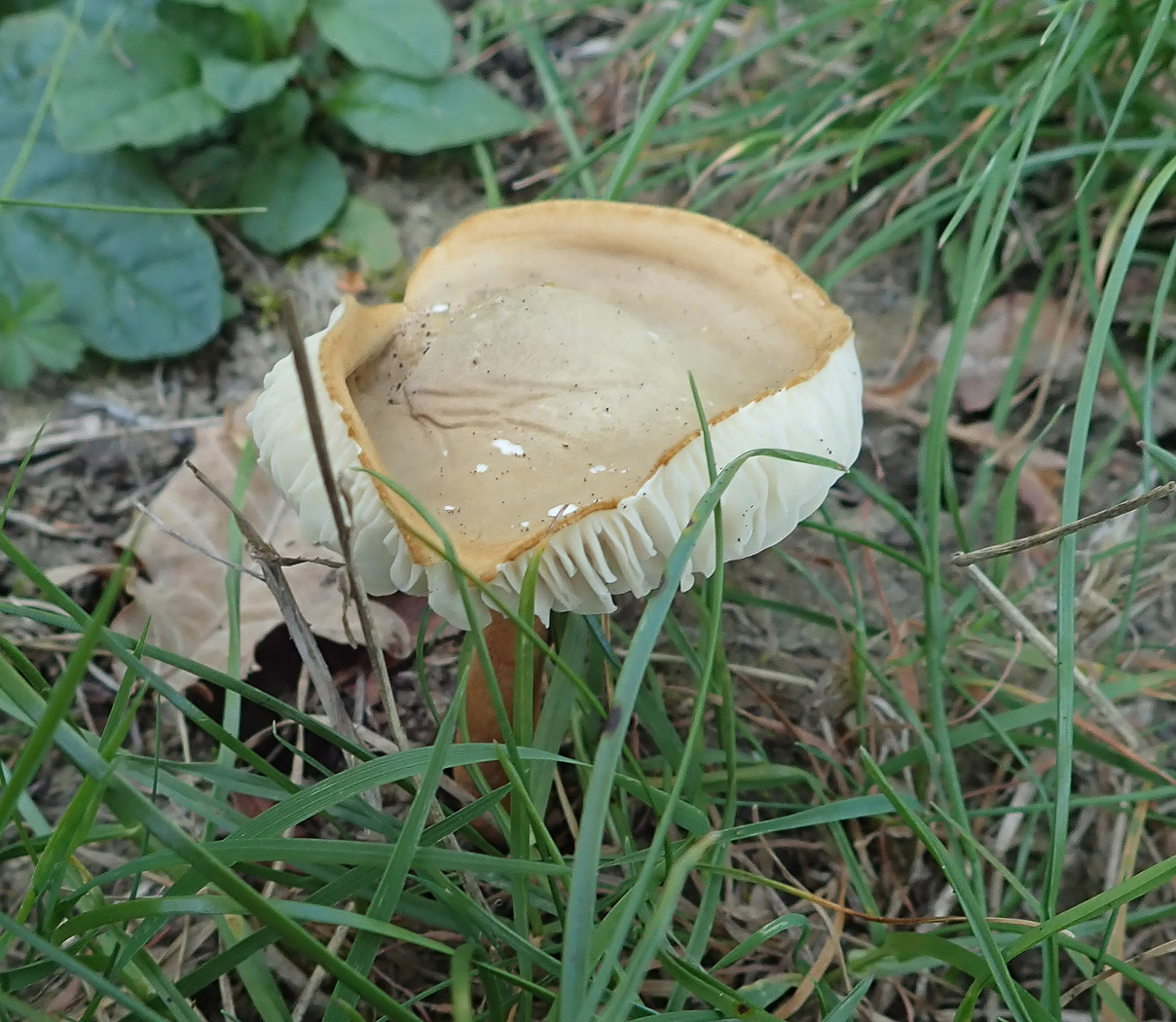
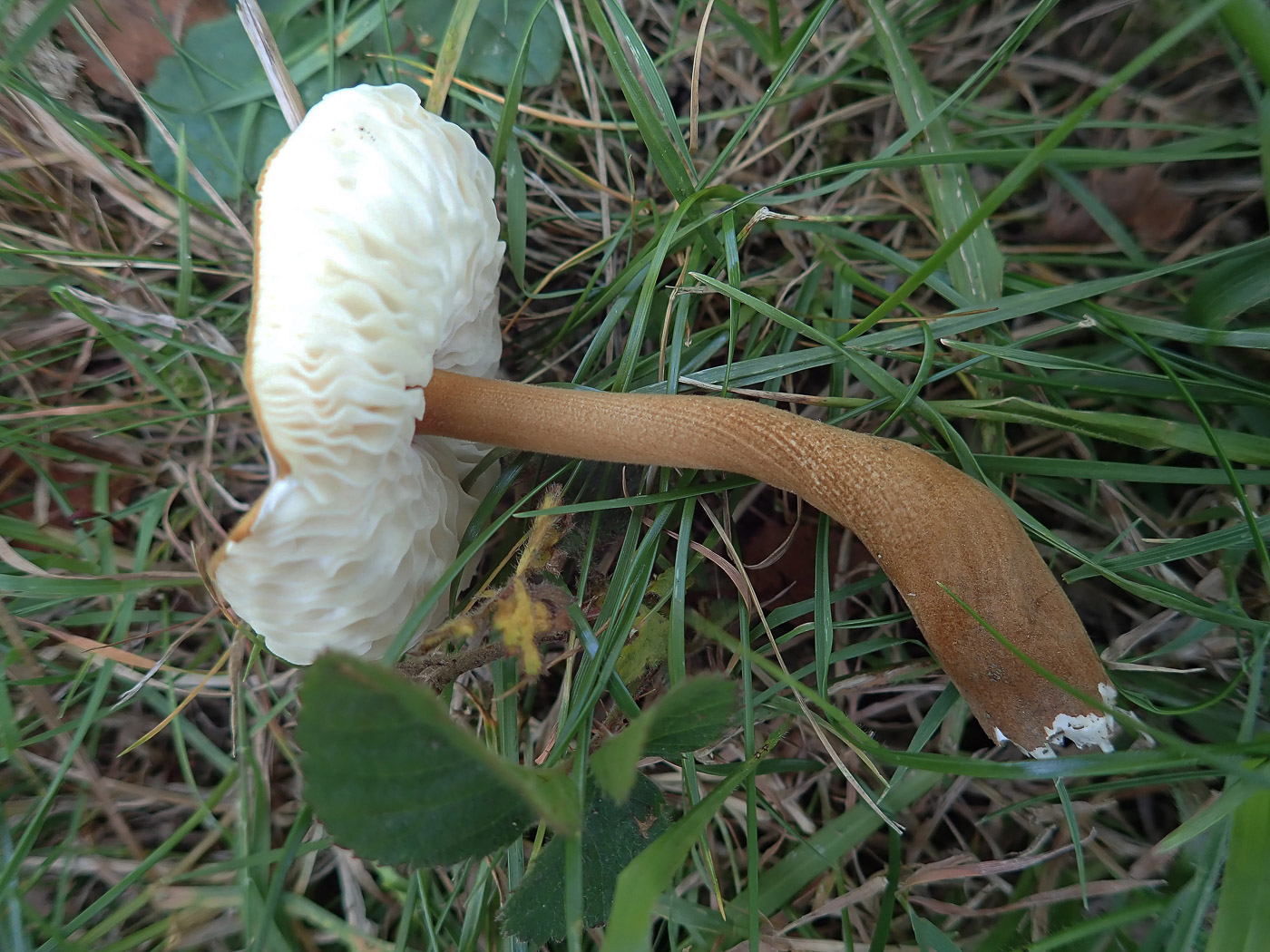
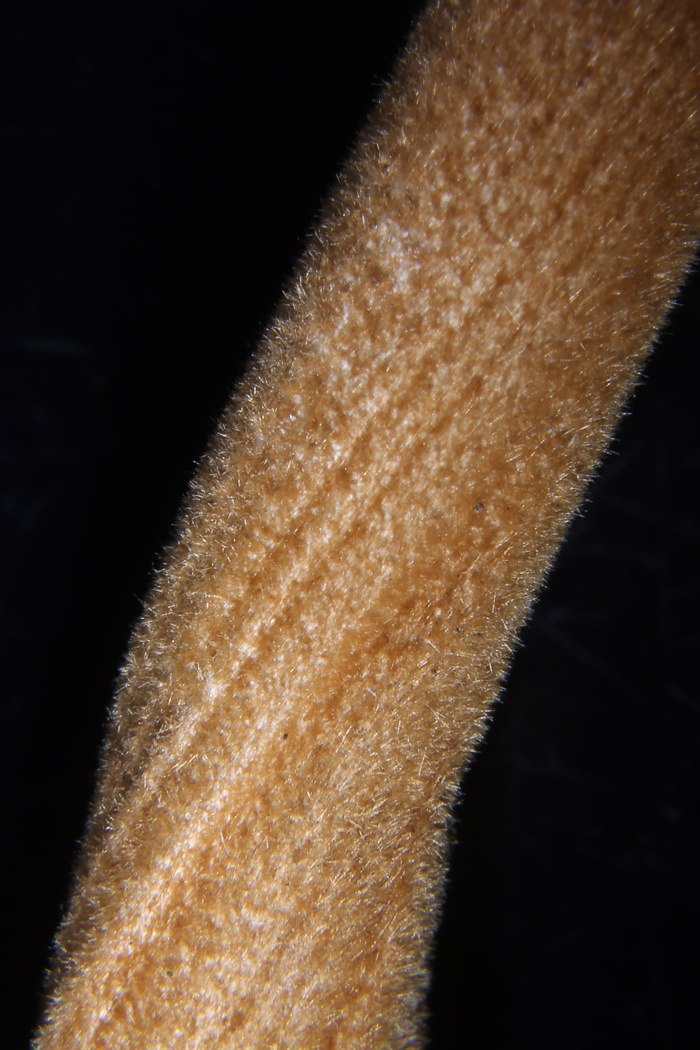 |
September 22nd Xerula pudens (No common name)
Martin Dodsworth found this rare species, new to the county, at Wotton Park Estate (photo Derek Schafer). Clearly similar to the very common X. radicata which also arises from the roots of deciduous trees, the key difference to note is the finely but densely hairy to velvety stem (see detailed photo). Compare with X. radicata, by chance also dated Sept 22nd.
|
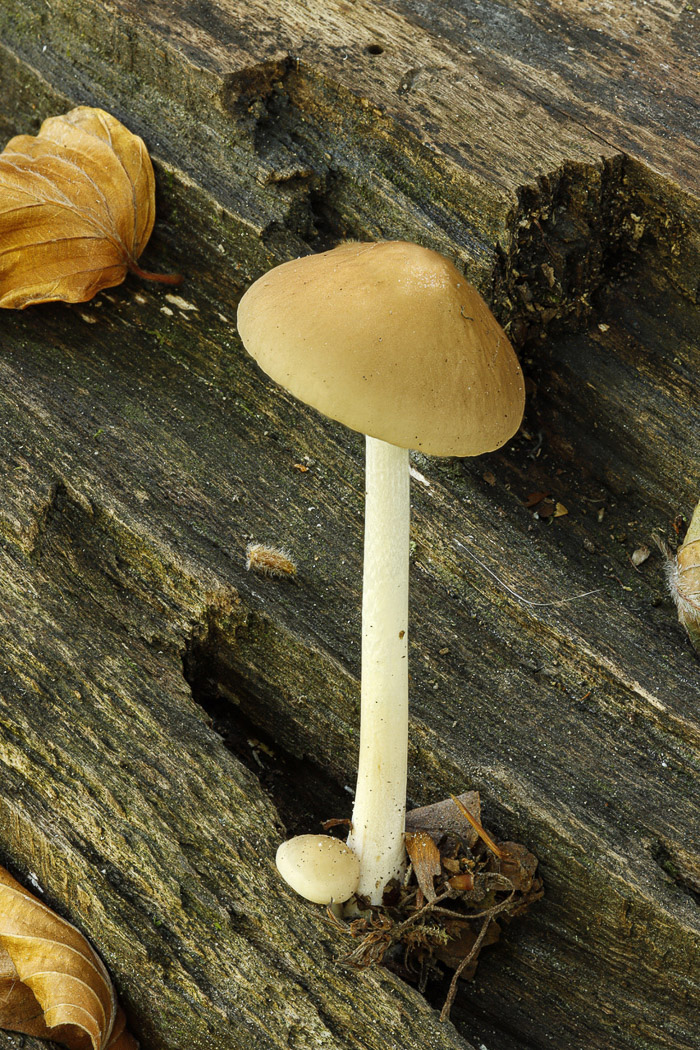
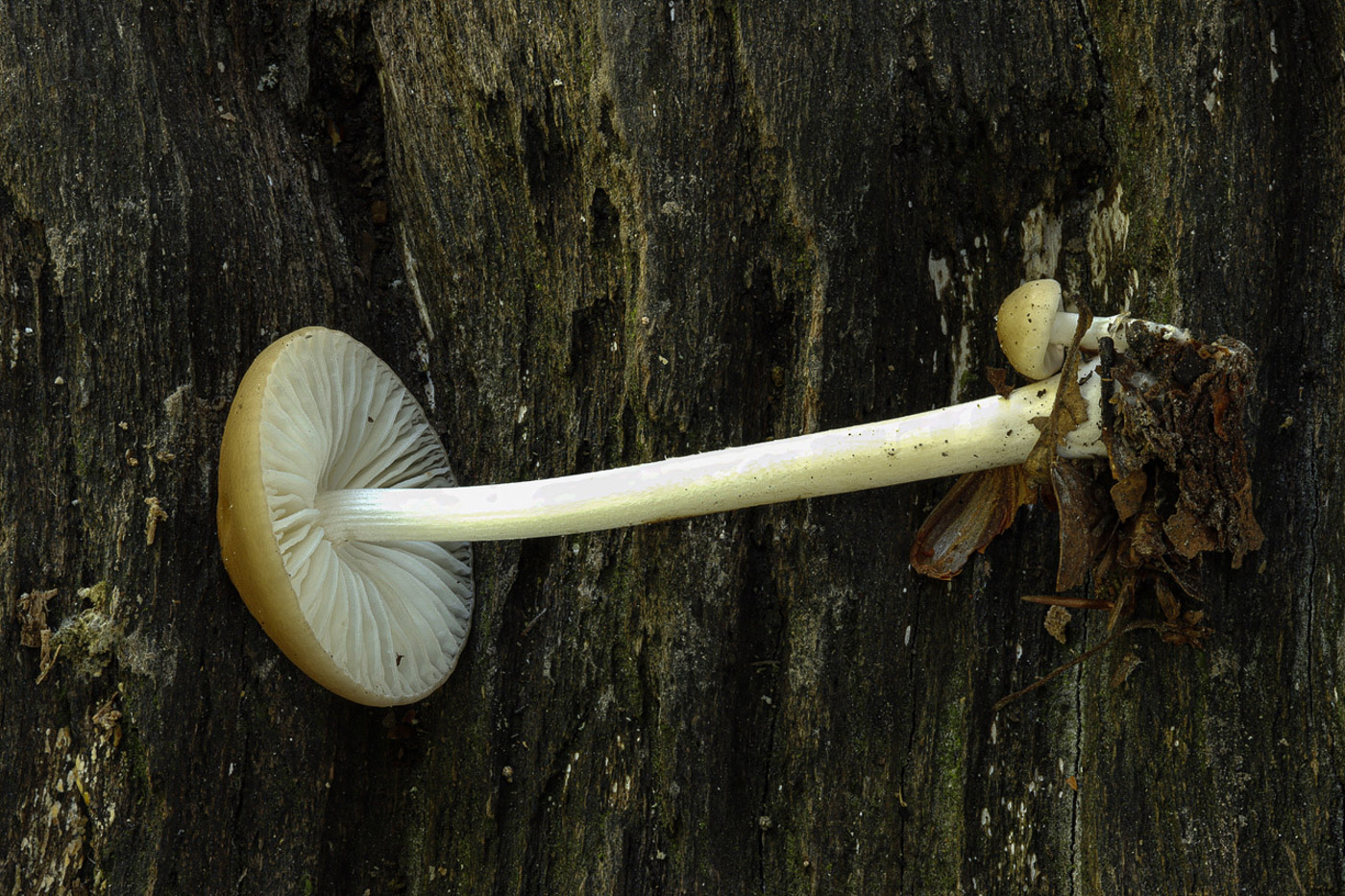
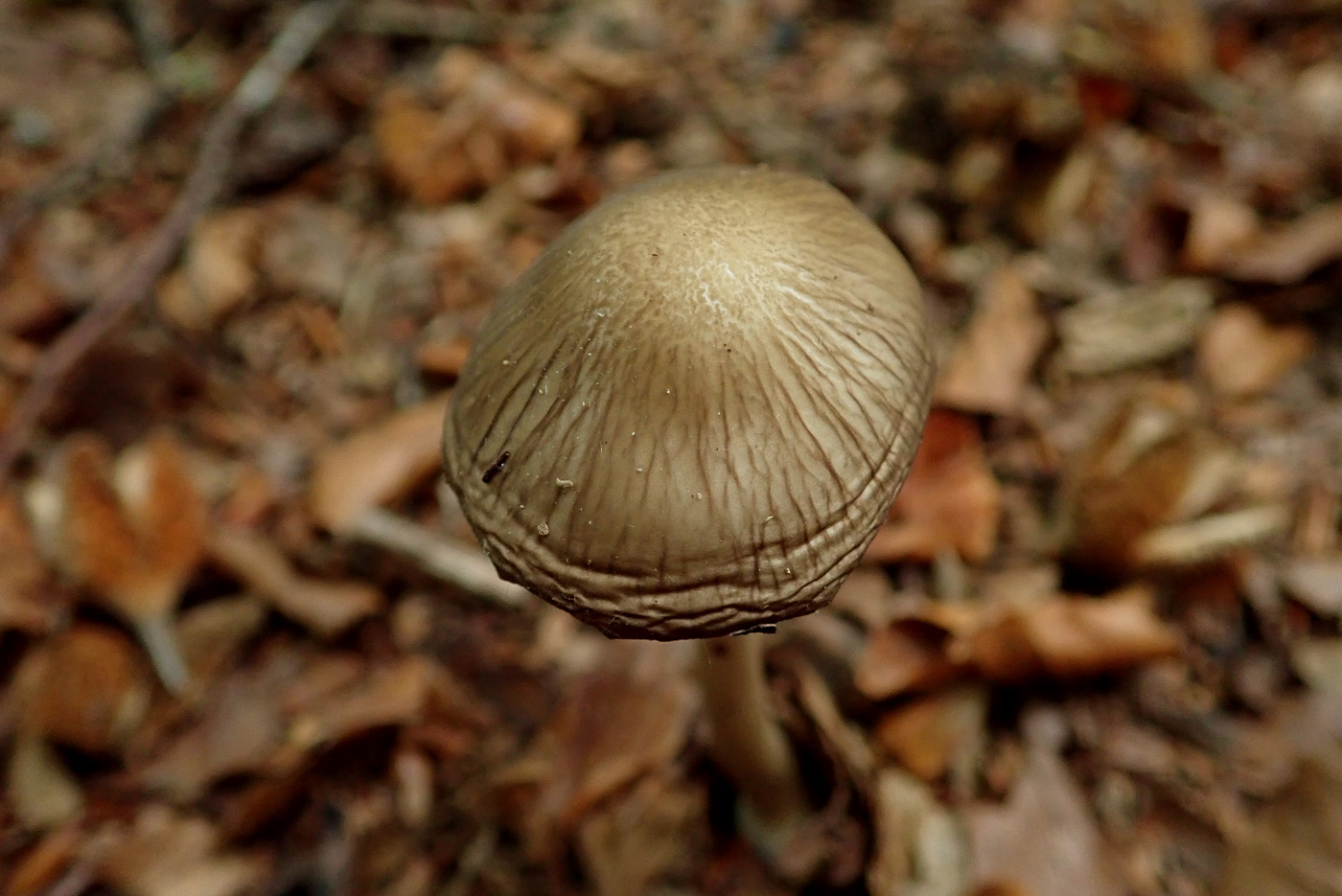
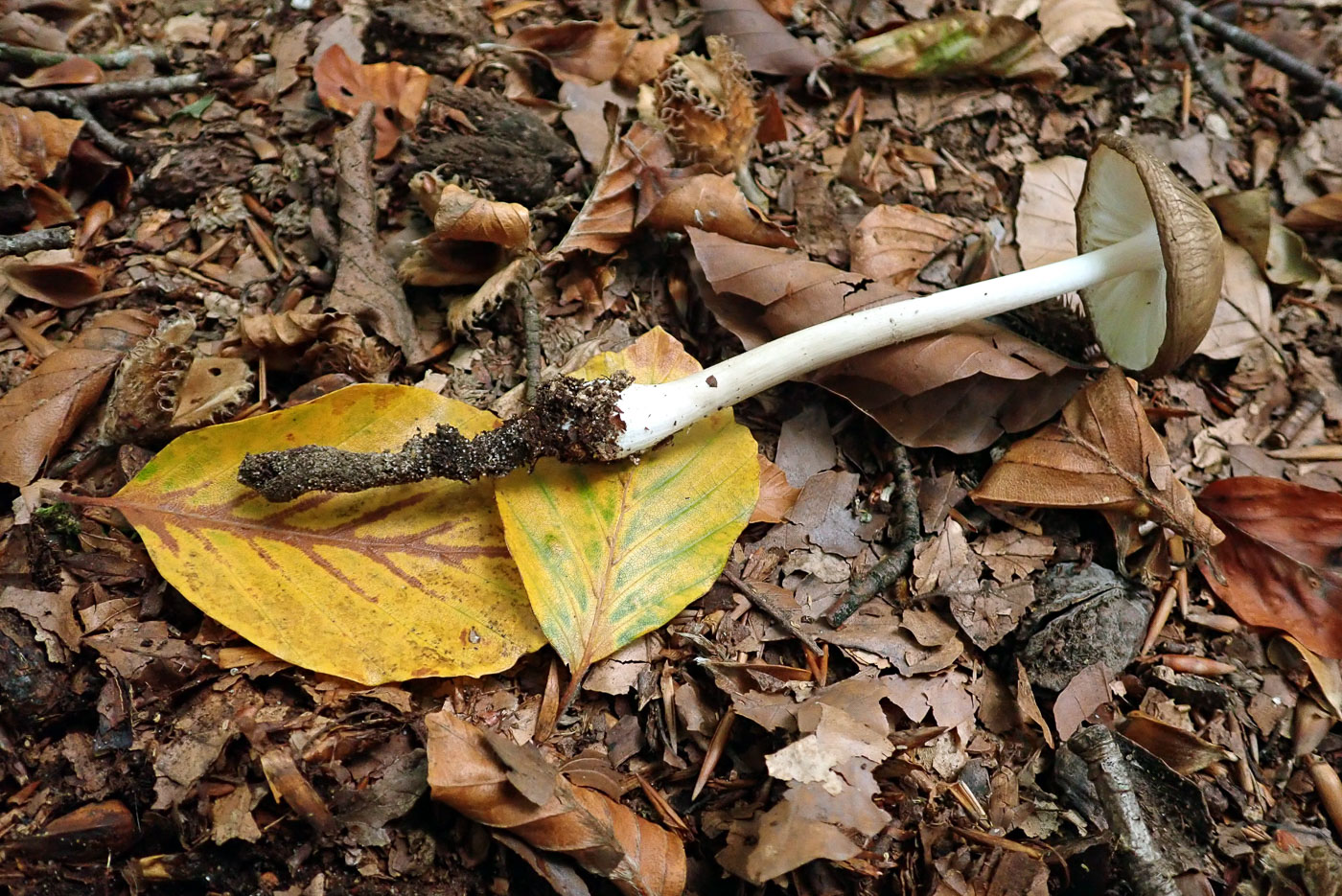 |
September 22nd Hymenopellis radicata (Rooting Shank)
Its name only recently changed from Xerula radicata, this common woodland species was found in Naphill Common by Paul Goby. It grows on the roots of deciduous trees, most commonly Beech, and though it has a brown cap like so many other mushrooms it has three redeeming features. The cap surface is clearly wrinkled (though less so as it dries out as here) and in moist conditions is sticky, separating it from other lookalikes, also the gills are not only very widely spaced but also pure white (and occasionally lined with a dark edge). The third features is the clincher: once you've recognised the wrinkled brown cap, take care when extracting it to dig down around the tall stem which will be found to extend well below the surface - the root. Only if the host tree root is on the surface will this stem extention be absent. See additional photos (taken Sept 27th) for a more distinctly wrinkled cap and a stem with excavated root.
|
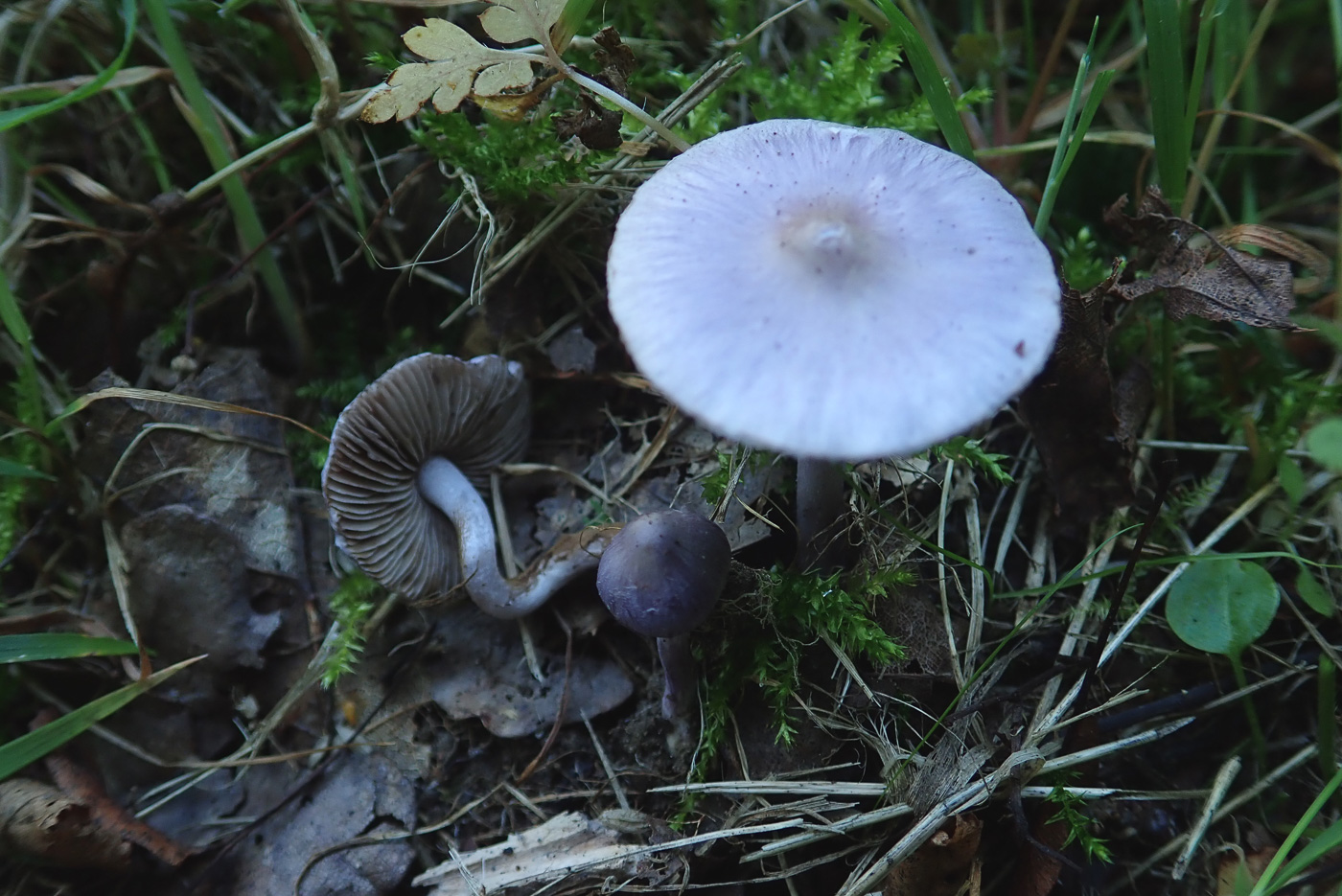 |
September 22nd Inocybe lilacina (Lilac Fibrecap)
This attractively coloured mushroom was found by Penny Cullington in grass under Lime at Turville Heath. The lilac tones of the species could be mistaken for Laccaria laccata (Amethyst Deceiver) or possibly even Lepista nuda (Wood Blewit), but no other species has this combination of beautiful lilac cap and quite crowded brown gills. The cap rarely exceeds 3cm and the raised slightly brownish umbo in the centre is also typical. It occurs quite commonly under mixed deciduous trees.
|
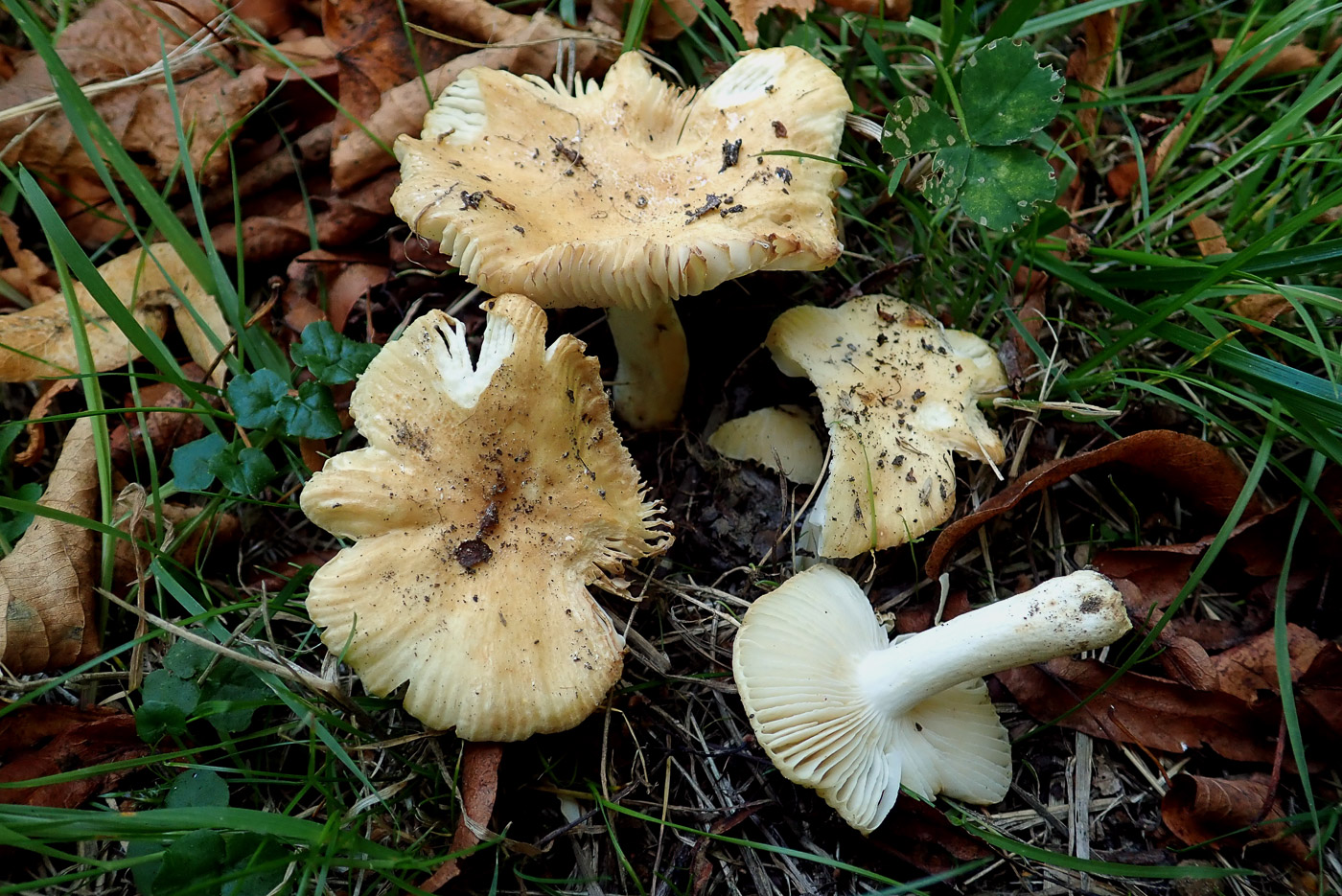 |
September 22nd Russula farinipes (No common name)
Penny found this collection growing in grass under Birch and Lime at Turville Heath. Not really rare but with only a few Bucks records, this is possibly overlooked as the very common R. ochroleuca (Ochre Brittlegill) due to its similar cap colour. However, on careful observation the rather asymmetrical shape and quite widely spaced gills should alert one that it's different. The main feature to note, however, is that the cap cuticle refuses to peel at all and has a rubbery feel - unique amongst the yellow capped Brittegills.
|
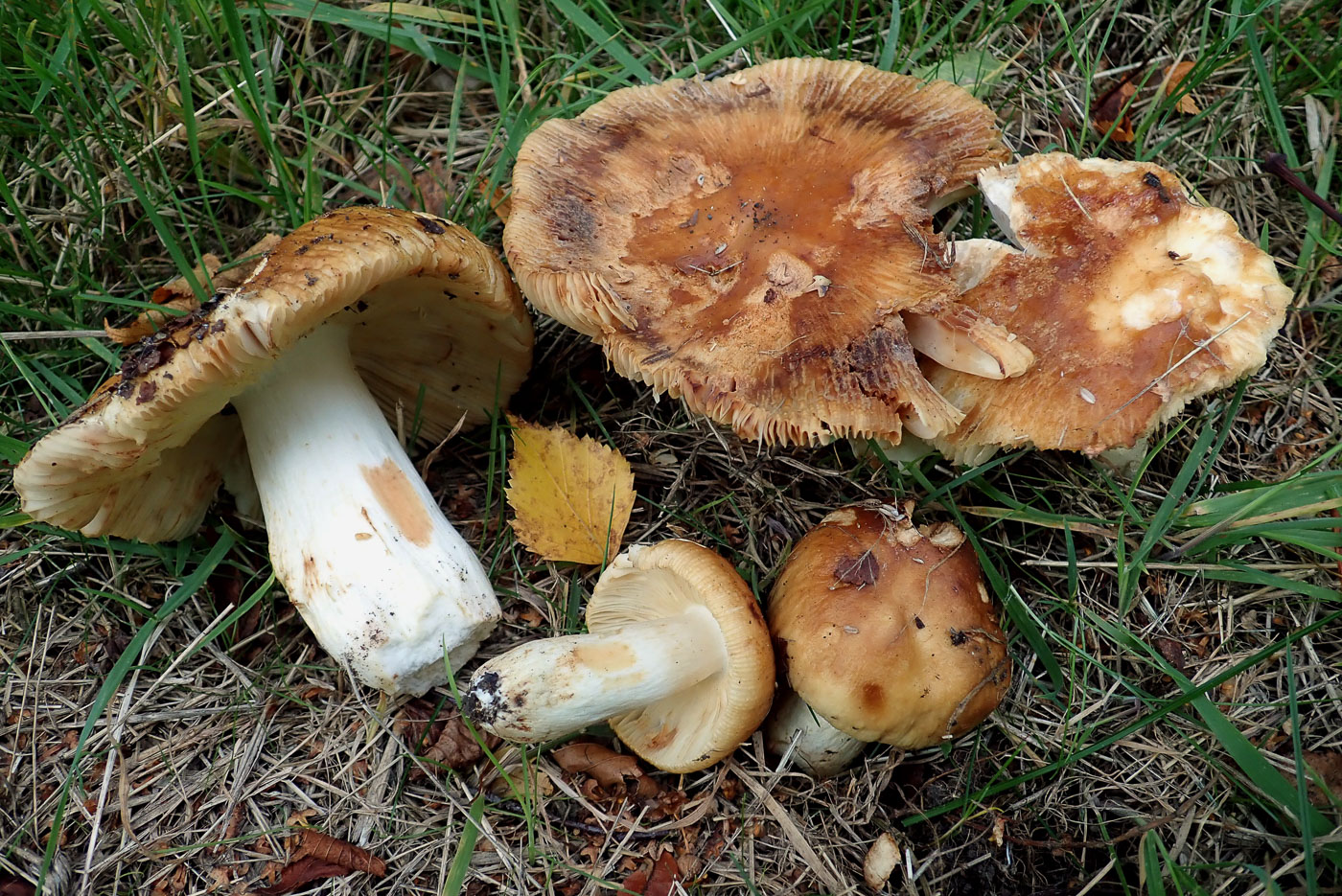
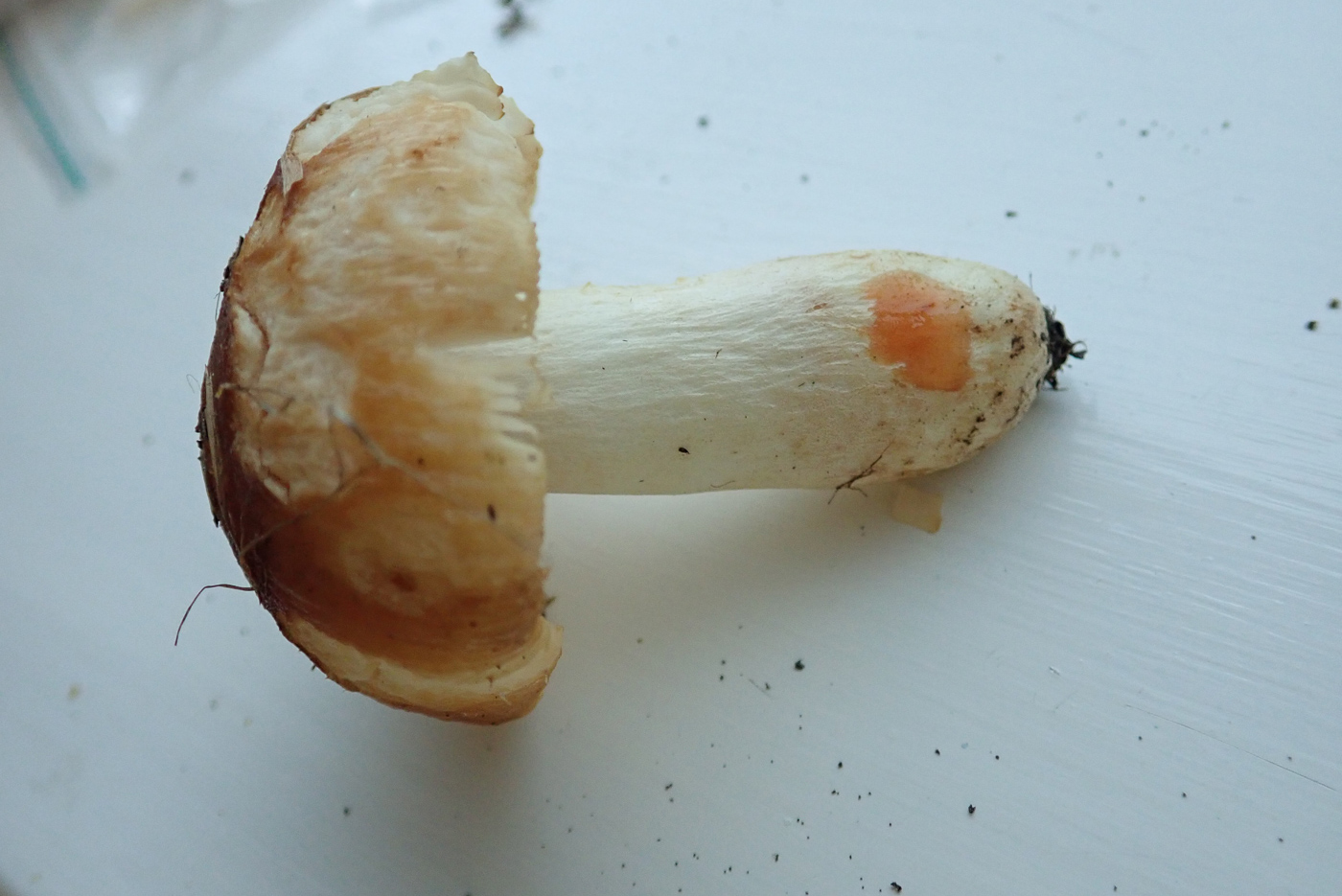 |
September 22nd Russula subfoetens (Stinking Brittlegill)
Penny Cullington found this collection under Birch at Turville Heath. The species belongs to a group of Brittlegills affectionately known as 'the smellie', most of which grow under Oaks though both this one and its lookalike R. foetens occur under a variety of deciduous trees. Both are quite uncommon, have a sour rancid smell, also sticky caps (glutinous in wet weather) - unusual for the genus, and have a dull rusty reaction when rubbed with a crystal of ferrous sulphate on the stem (seen here). The easiest way to split them is to place a drop of KOH on the stem - no reaction with R. foetens but quickly golden in R. subfoetens as seen in the singleton photo.
|
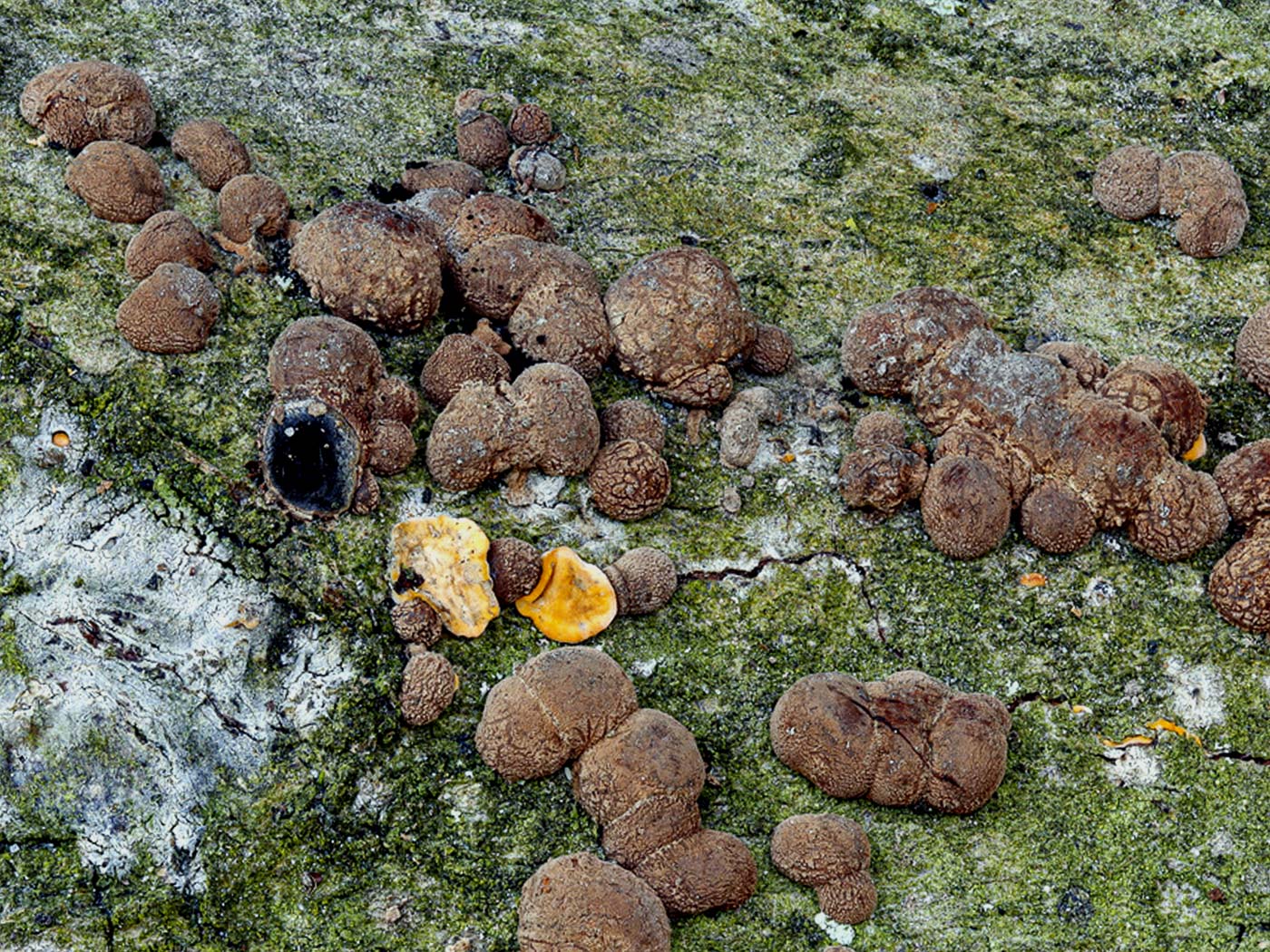
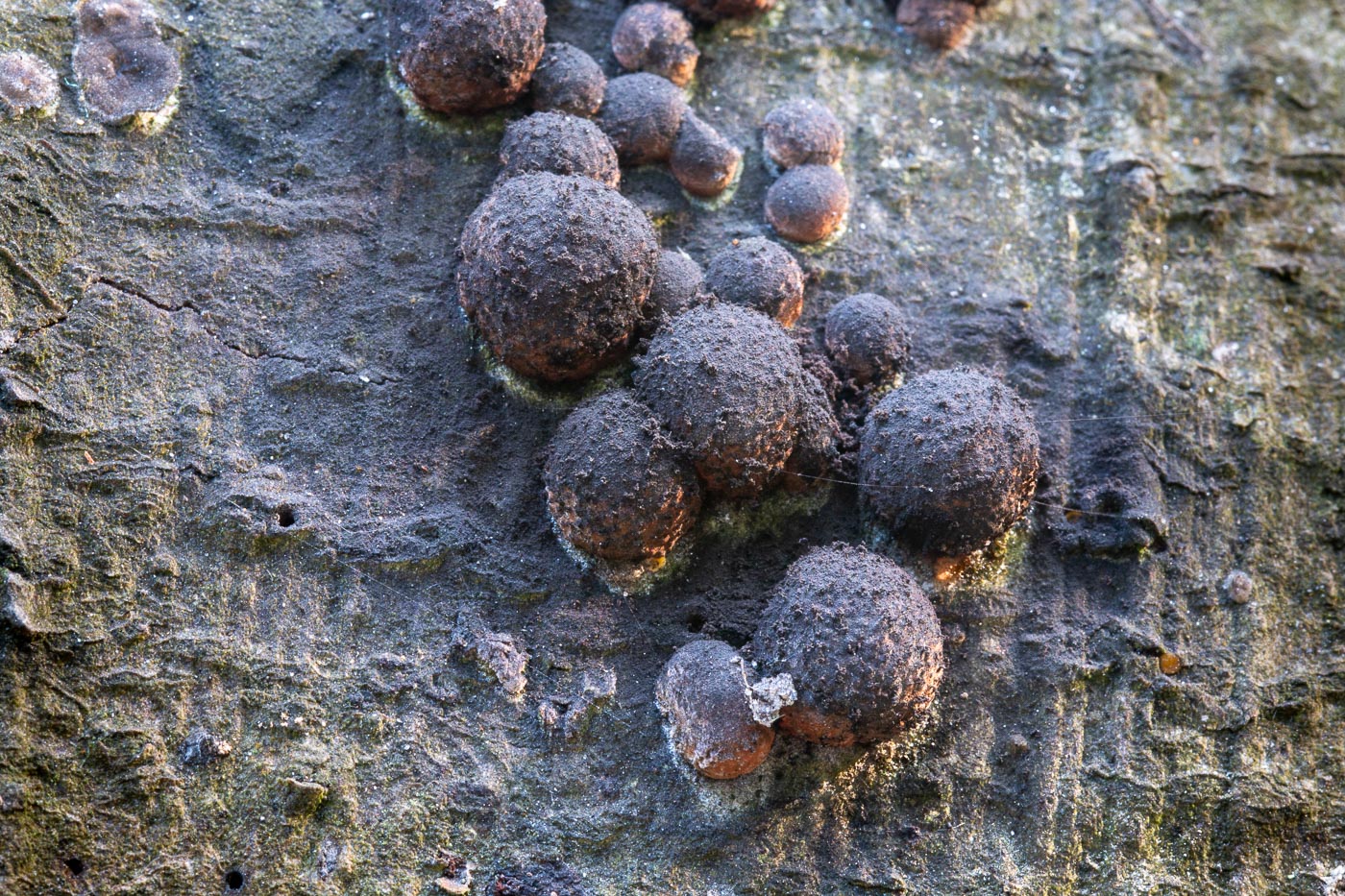 |
September 22nd Hypoxlyon fragiforme (Beech Woodwart)
This common ascomycete was found on its typical host, fallen Beech, in Naphill Common by Peter Davis and Paul Goby independently. There are several different species of Woodwart, all pretty similar, and the easiest way to identify them is by knowing which species fruits on which type of wood. This particular species only grows on Beech and the name 'fragiforme' refers to its bumpy surface which is not unlike that of a strawberry (Latin fragaria). It's always found in swarms, sometimes in large quantities and fruitbodies get no bigger than 1cm across. They start out reddish to cocoa brown (see photo 1) and end up almost black when older (see photo 2).
|
September 21st 2020
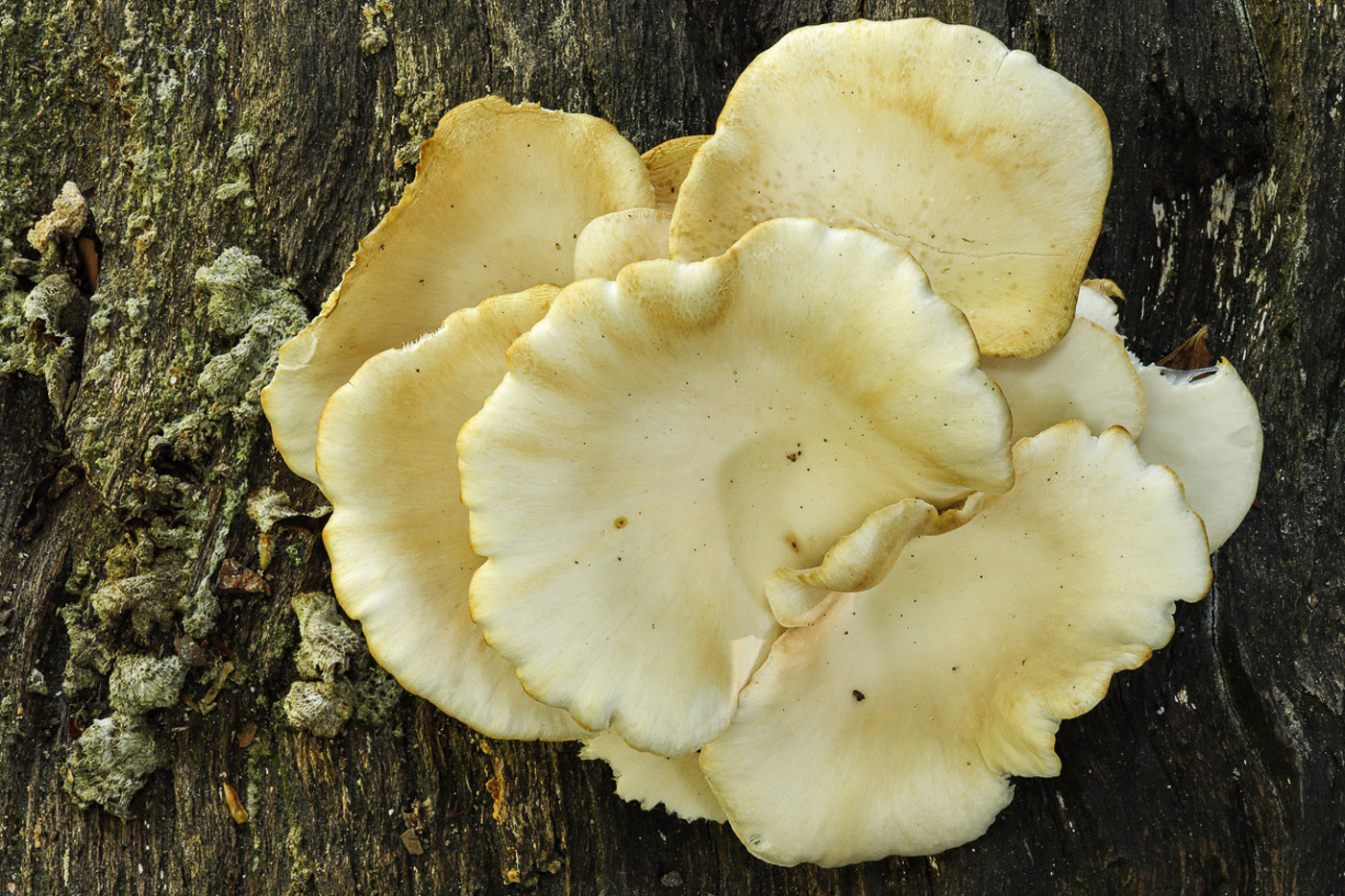
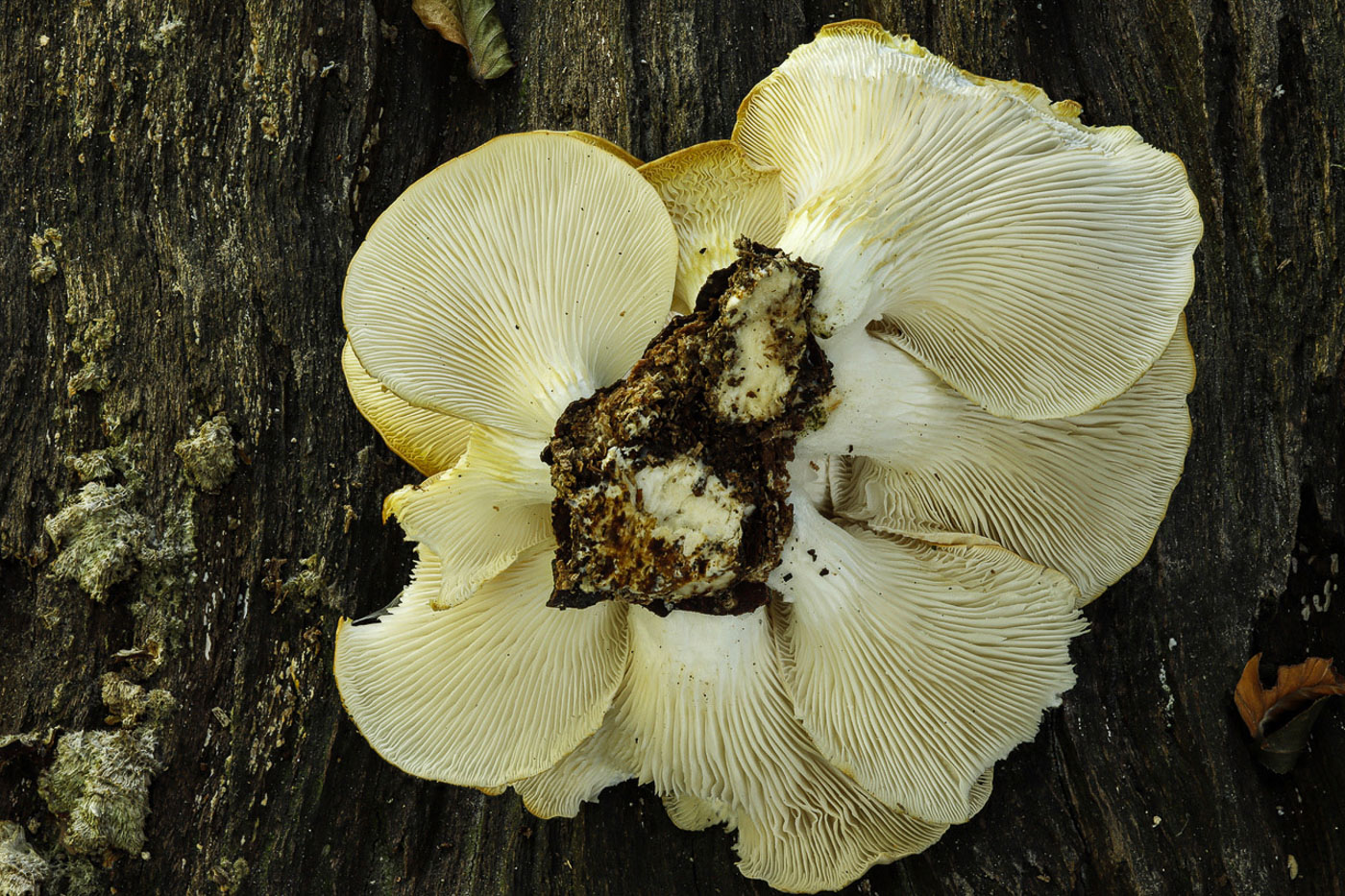 |
September 21st Pleurotus cornucopiae (Branching Oyster)
Paul Goby found this nice cluster on fallen Beech in Naphill Common. (We do have an earlier photo dated Sept 6th but today's photos are much more typical.) Compared with the much more common P. ostreatus (Oyster Mushroom), caps are white to cream (no darker), fruit bodies tend to cluster tightly together appearing branched, and the decurrent (sloping) gills run further down the stem. Note also the typical yellowing which develops when drying out (seen here). See Paul's photos of P. ostreatus, also dated Sept 21st for comparison.
|
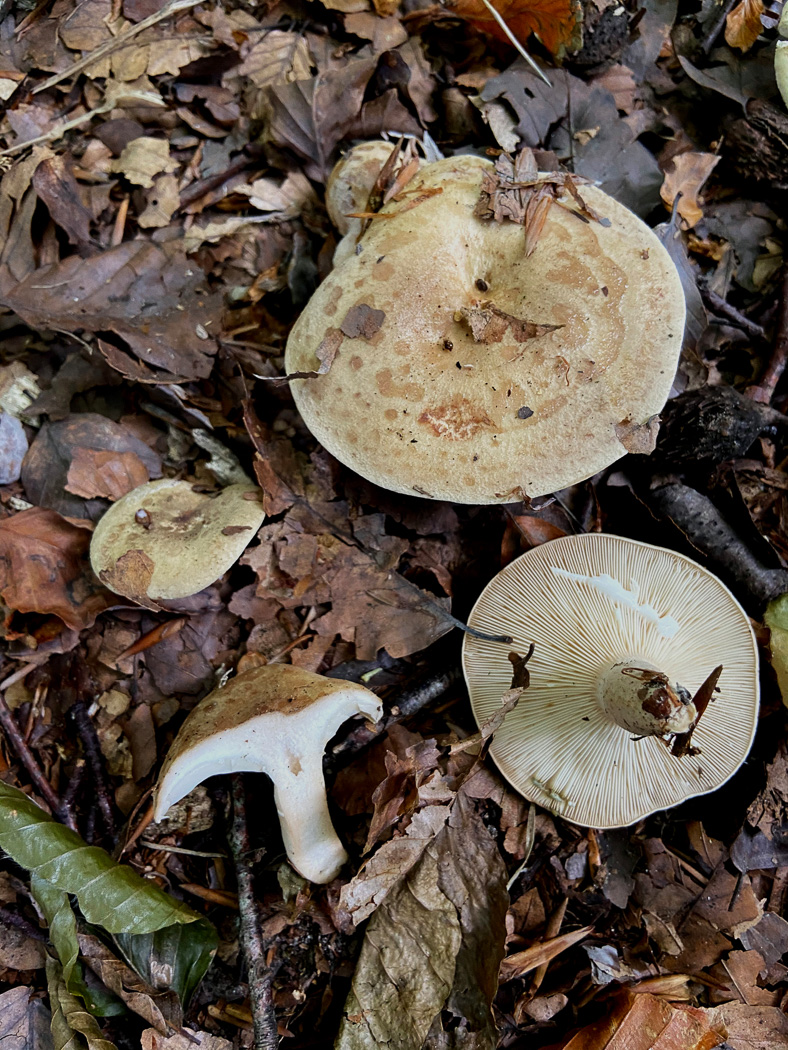
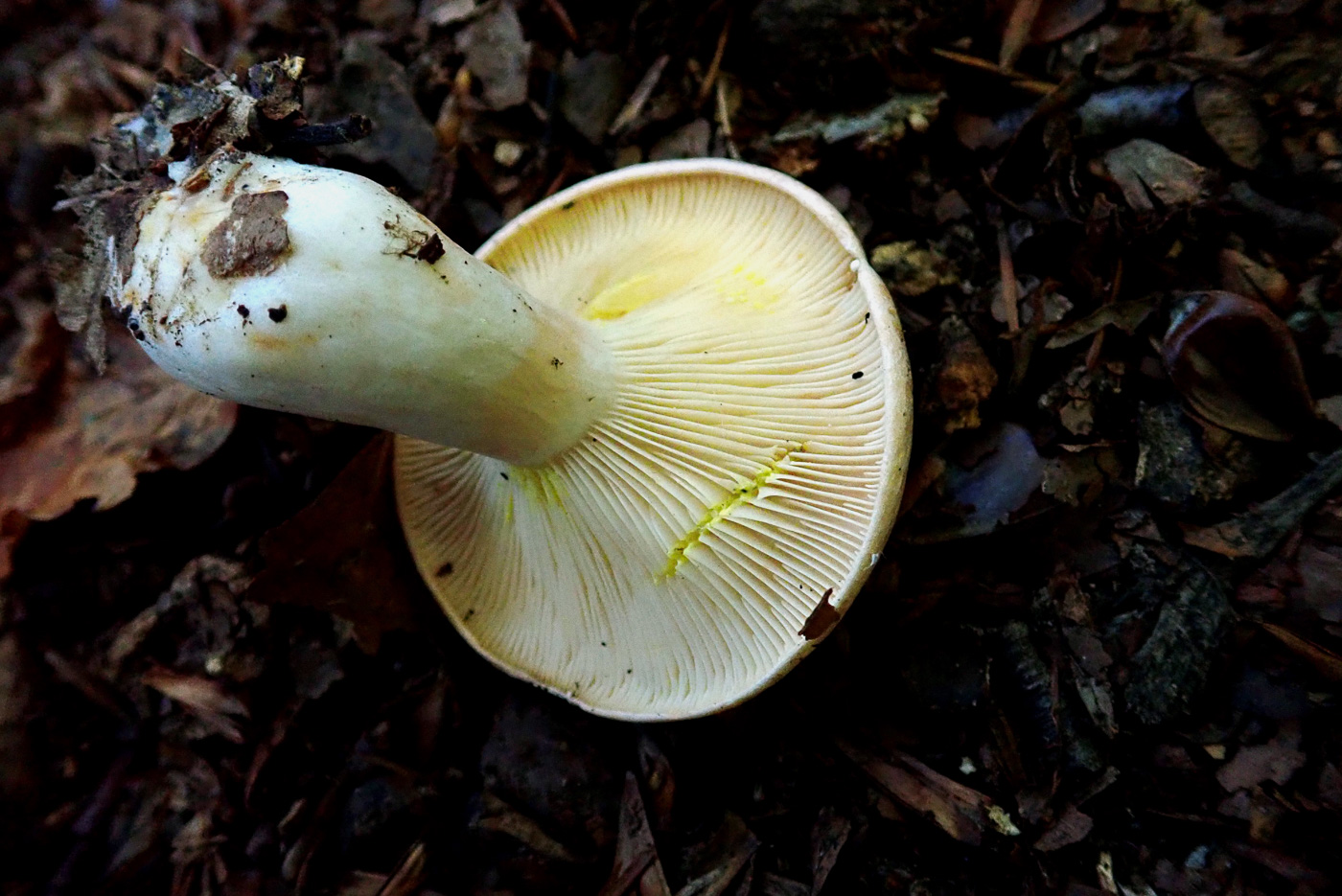 |
September 21st Lactarius chrysorrheus (Yellowdrop Milkcap)
This collection was found by Sarah Ebdon under Oak in Bradenham Wood. An occasional Milkcap, it is only found under Oak as also is the much more common and darker capped L. quietus (Oak Bug Milkcap). Key features are the pale pinkish buff cap with droplet markings, the lack of distinctive smell (unlike L. quietus), but the give-away feature is the milk which, though white at first, if left for a few minutes once exposed on the gills turns bright yellow. See additional photo (taken Sept 27th) for gills where the milk has turned yellow.
|
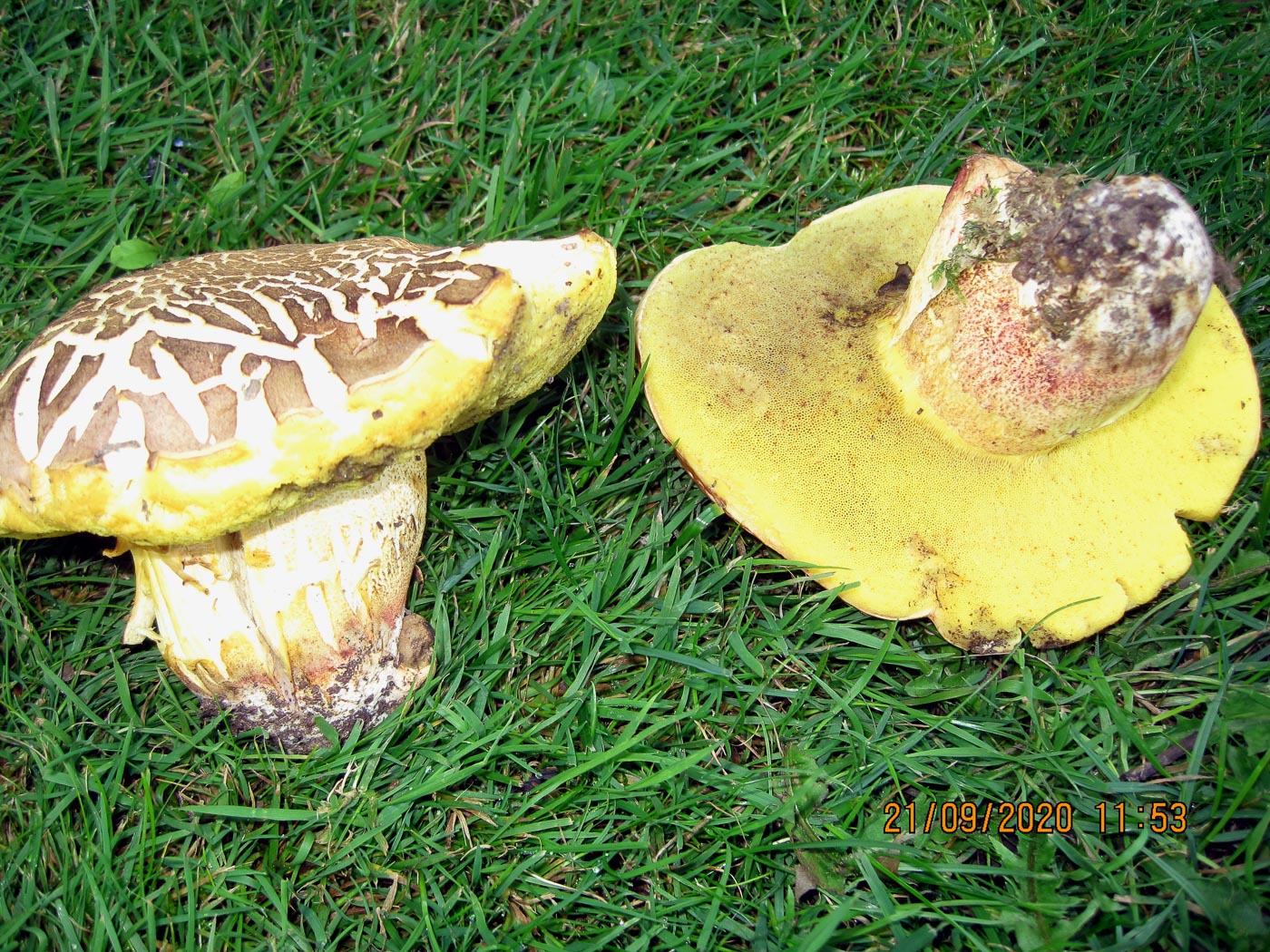
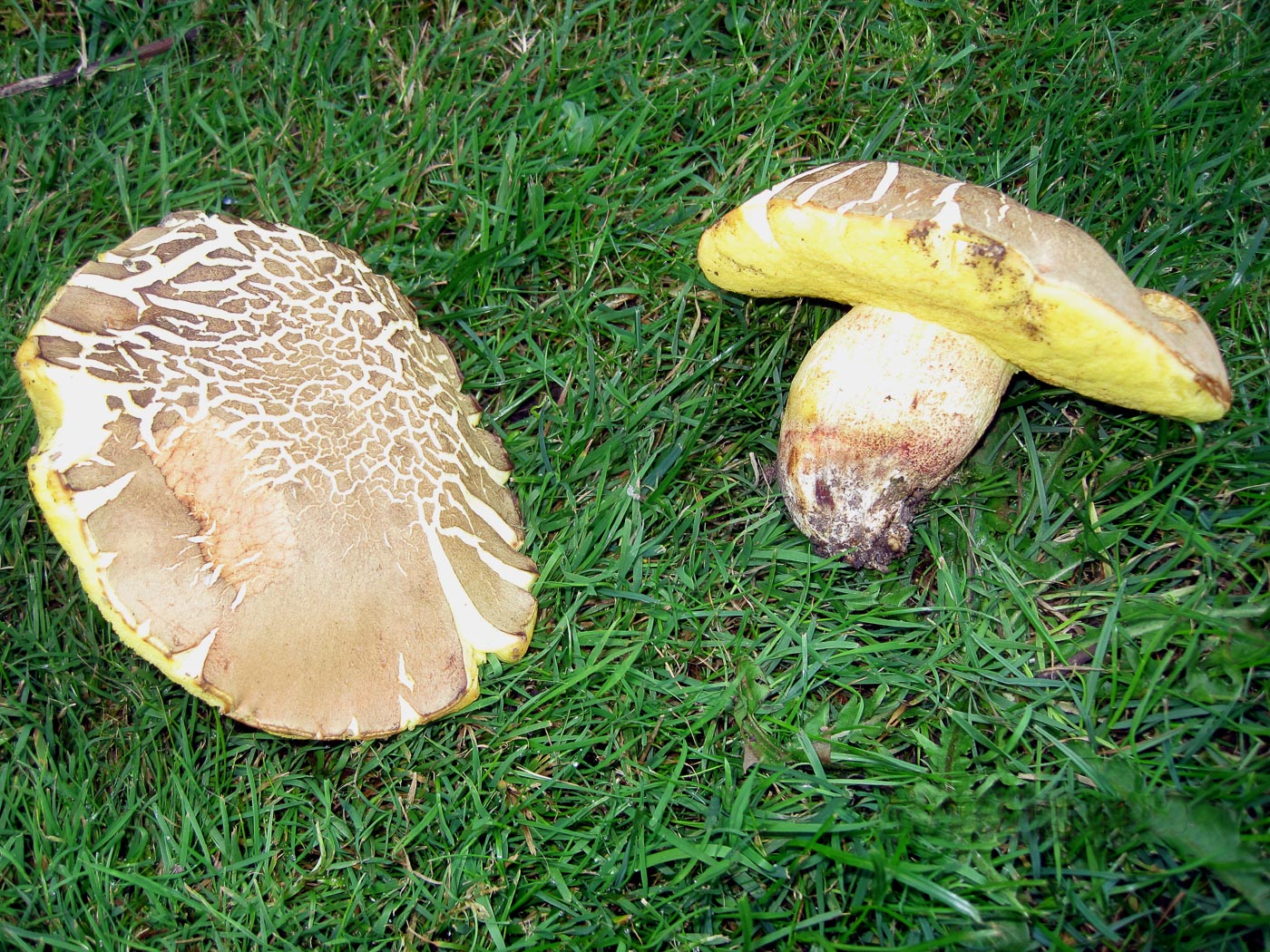 |
September 21st Hemileccinum impolitum (Iodine Bolete)
Greg Douglas came across this somewhat unusual bolete (previously Boletus impolitus) growing in a grassy path edge under Oak in Little Kingshill. A chunky species with a firm feel to it, the key characters are the pale brown smooth cap (here cracking due to the recent hot sun), very small yellow pores which do not stain blue on pressing and the yellowish stem which tends to taper at the bottom. The common name refers to the unusual smell of iodine which should be checked for if the stem base is cut.
|
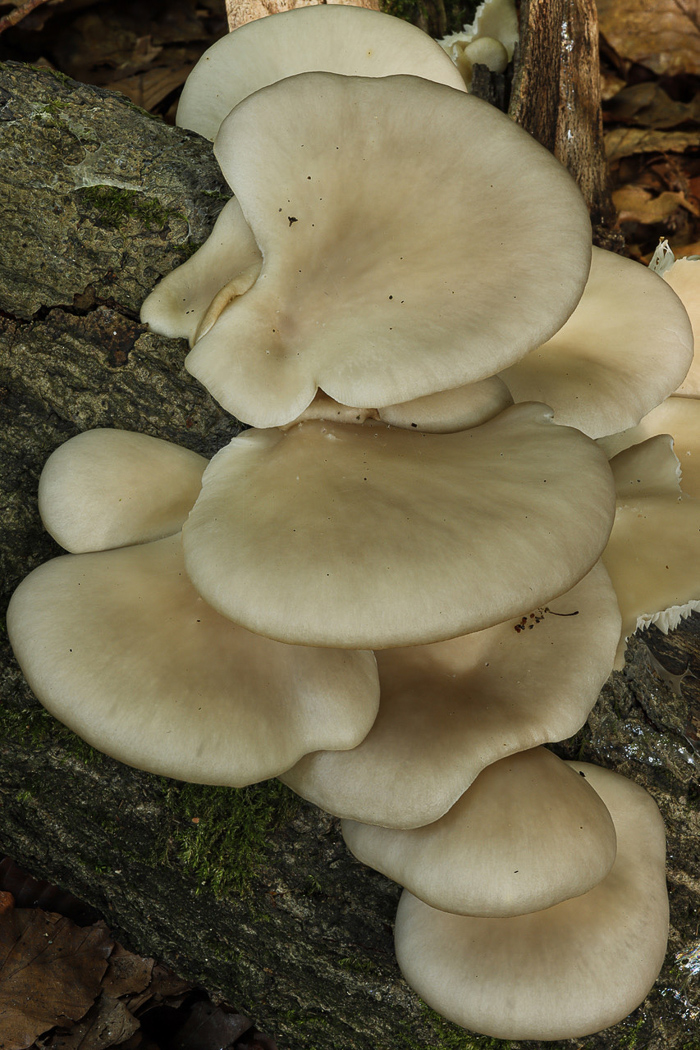
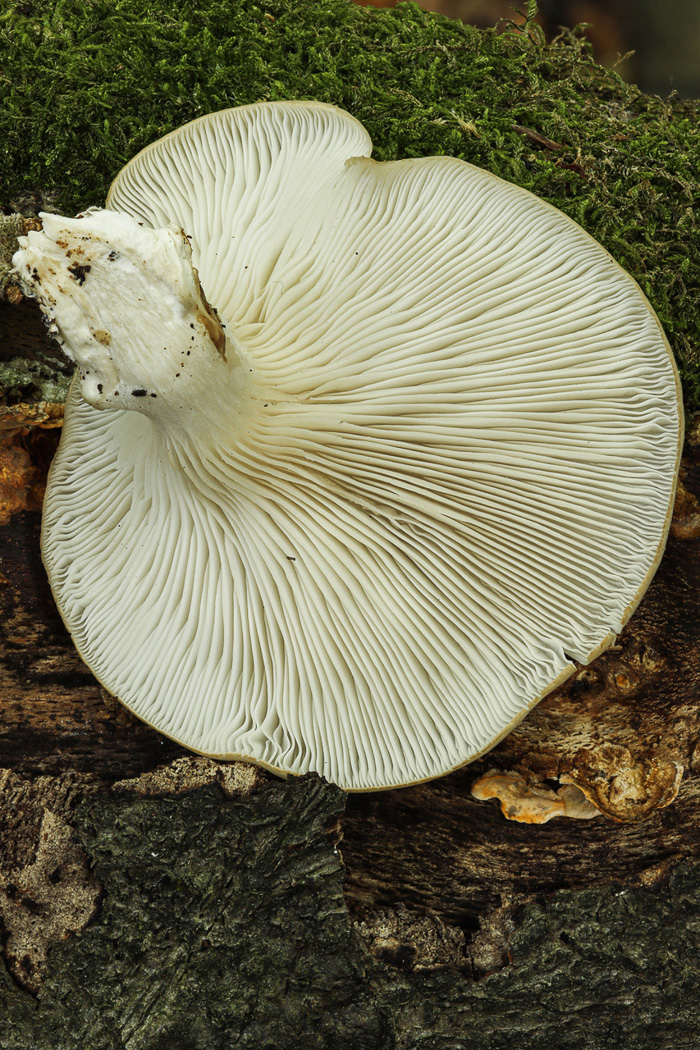
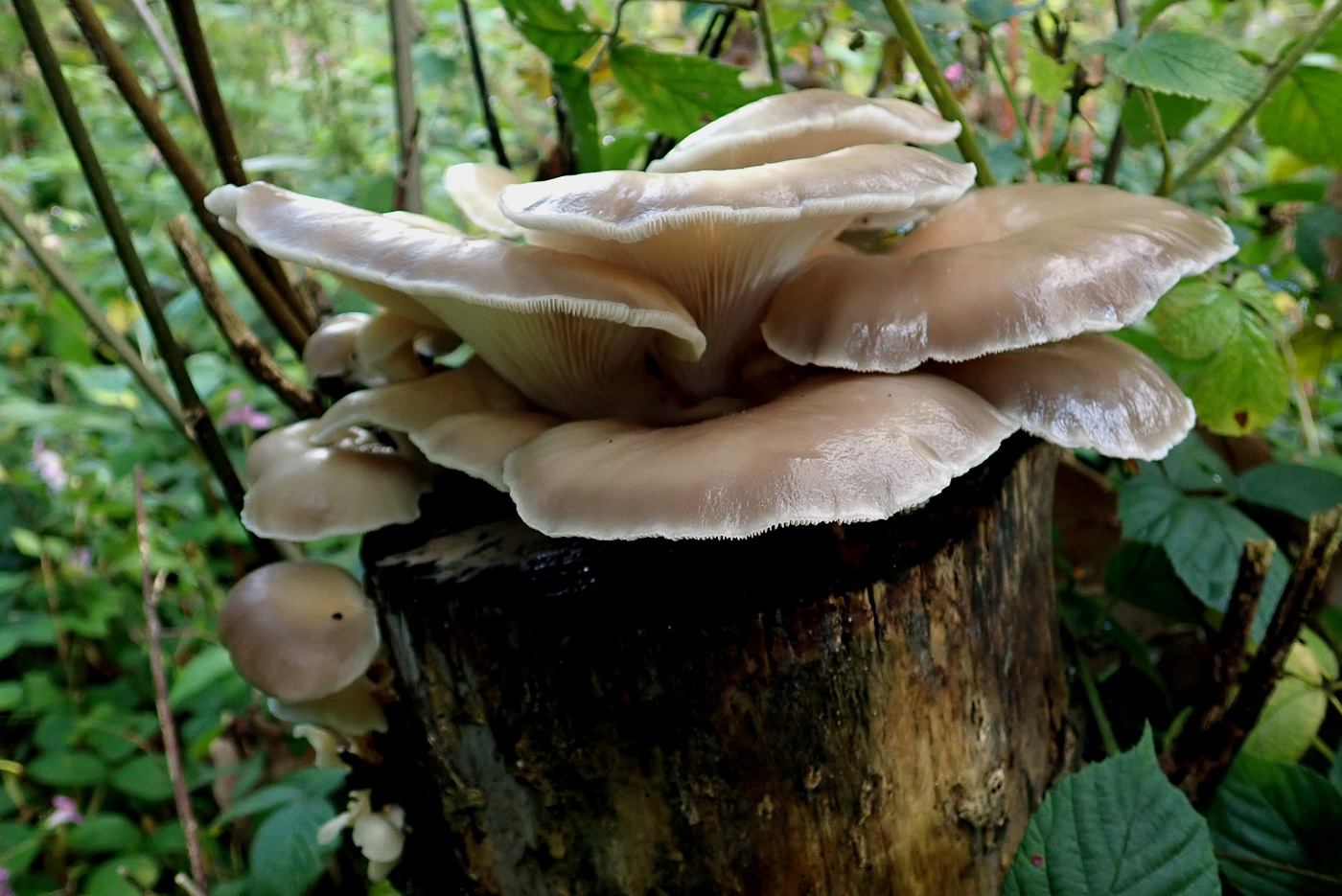 |
September 21st Pleurotus ostreatus (Oyster Mushroom)
Paul Goby found this cluster growing on fallen Beech at Naphill Common. The third eye-catching cluster on top of a sawn off stump was found on Oct 01 at Turville Heath, Penny Cullington. Oyster Mushrooms occur most commonly on this substrate but also on other deciduous wood. The clustered habit is typical, also the eccentric (off-centre) stem and decurrent gills (sloping down the stem), both features showing well in the upturned specimen. The cap colour can vary from almost white to quite dark grey, also worth noting is the tendency for the cap edges to turn yellow in age or when very dry. Surprisingly this is a nicely fresh collection considering the recent heat. The cultivated form available in supermarkets is indeed the same species
|
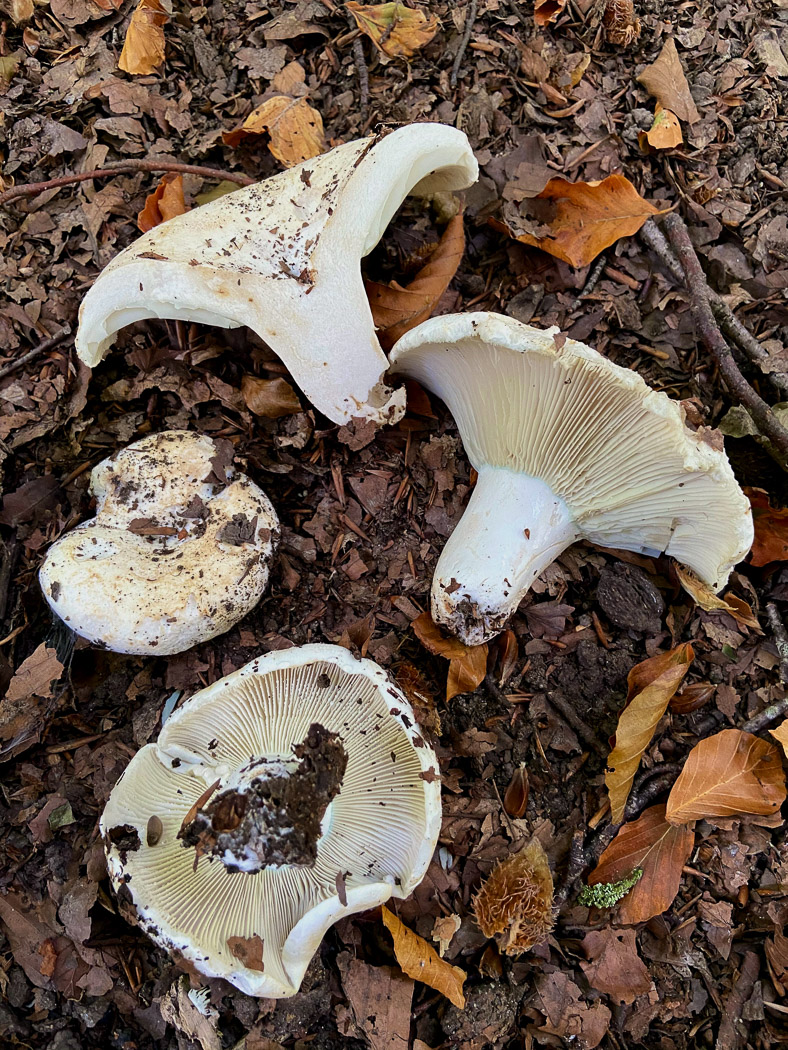
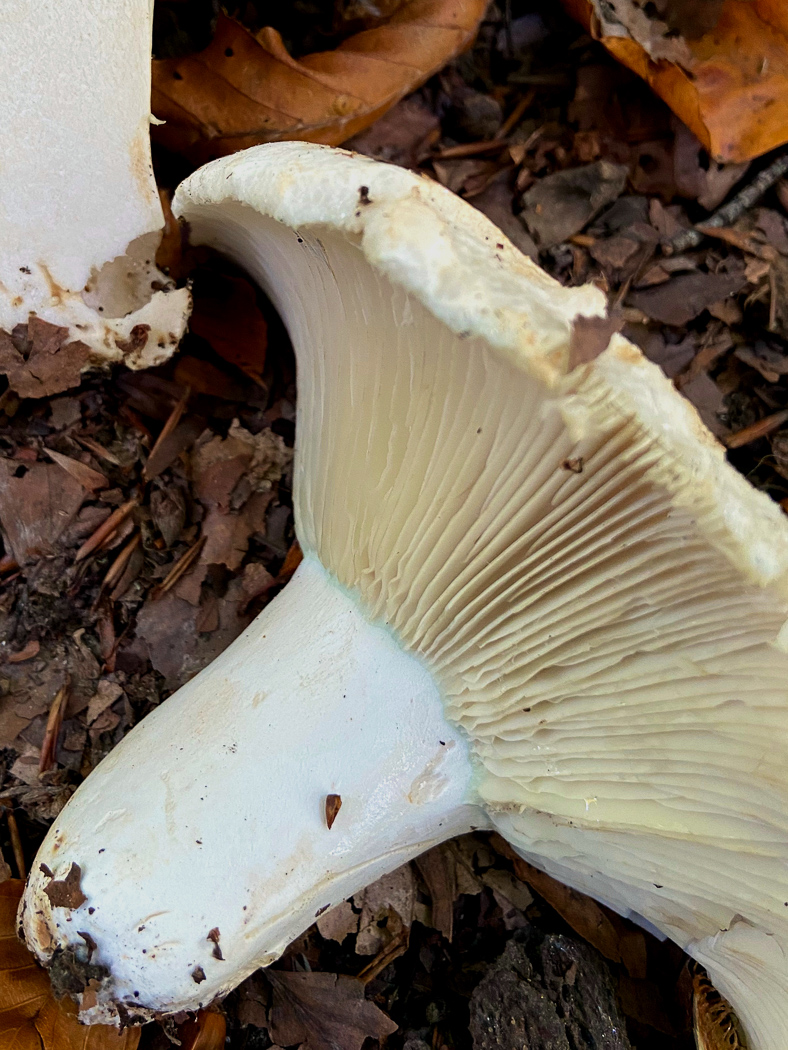 |
September 21st Russula chloroides (Blue Band Brittlegill)
Sarah Ebdon found this Brittlegill in Bradenham Wood under mixed deciduous trees. This is one of very few white capped Brittlegills which do not blacken when damaged. It's a large species and extremely similar to a few large white Milkcap species, the sunken centre and sloping gills being a feature they have in common. Damaging the gills and watching for milk is key to determining the genus, but if you notice this beautiful and unique turqoise blue band at the top of the stem (see second photo) then you know you have this particular Brittlegill. It is occasional and usually found under Oak.
|
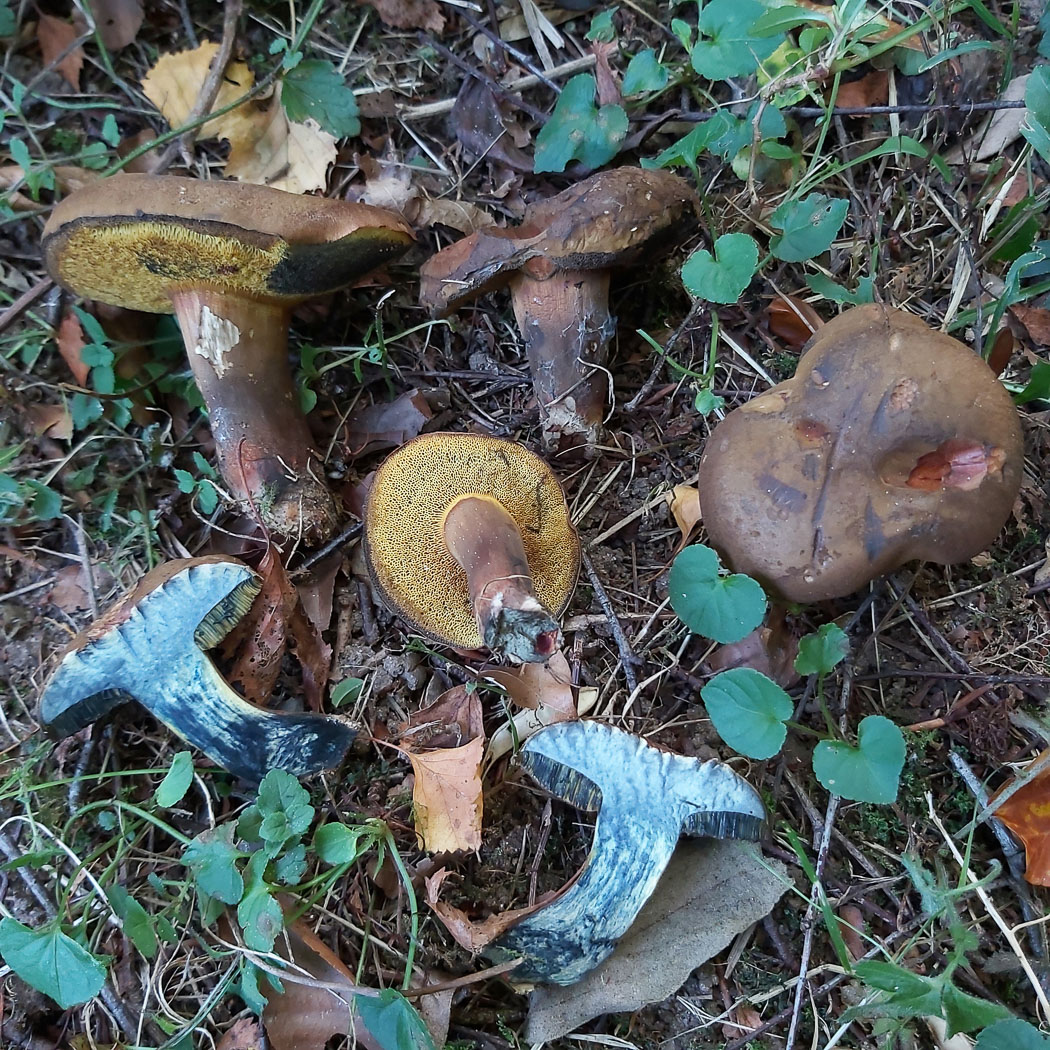 |
September 21st Cyanoboletus pulverulentus (Inkstain Bolete)
This uncommon bolete was fruiting under Beech and Hazel in Jordans Village, found by Jesper Launder. Superficially similar to the Xerocomus / ellus group of boletes, it differs in turning instantly deep blue not only where pressed on the yellow pores but also (in common with the Scarletina Bolete) when the flesh is exposed to the air. Rather a dry collection here but nevertheless a nice find.)
|
September 20th 2020
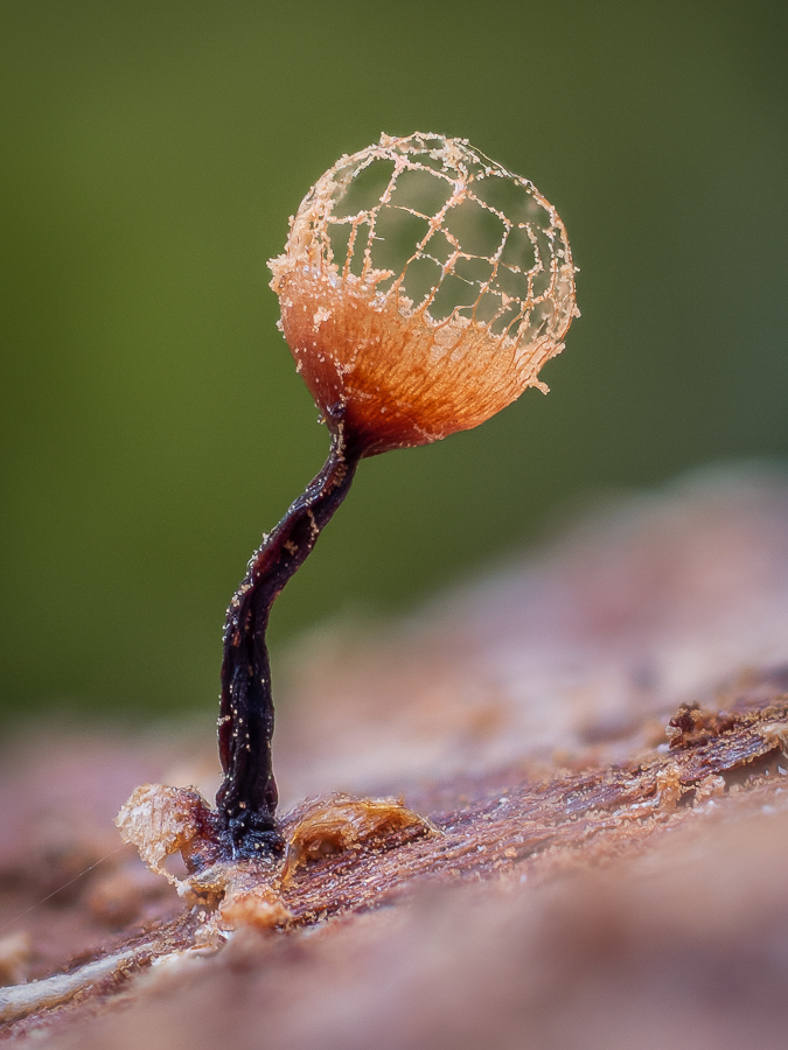 |
September 20th Cribraria rufa (a slime mould with no common name)
In Penn Wood Barry Webb found this tiny little specimen fruiting on fallen rotten Pine. About 20 species of this beautiful genus occur in the UK, mostly found on rotting conifer wood, and this one has apparently become much more common with the increase in plantations. However, we have no previous records in the county.
|

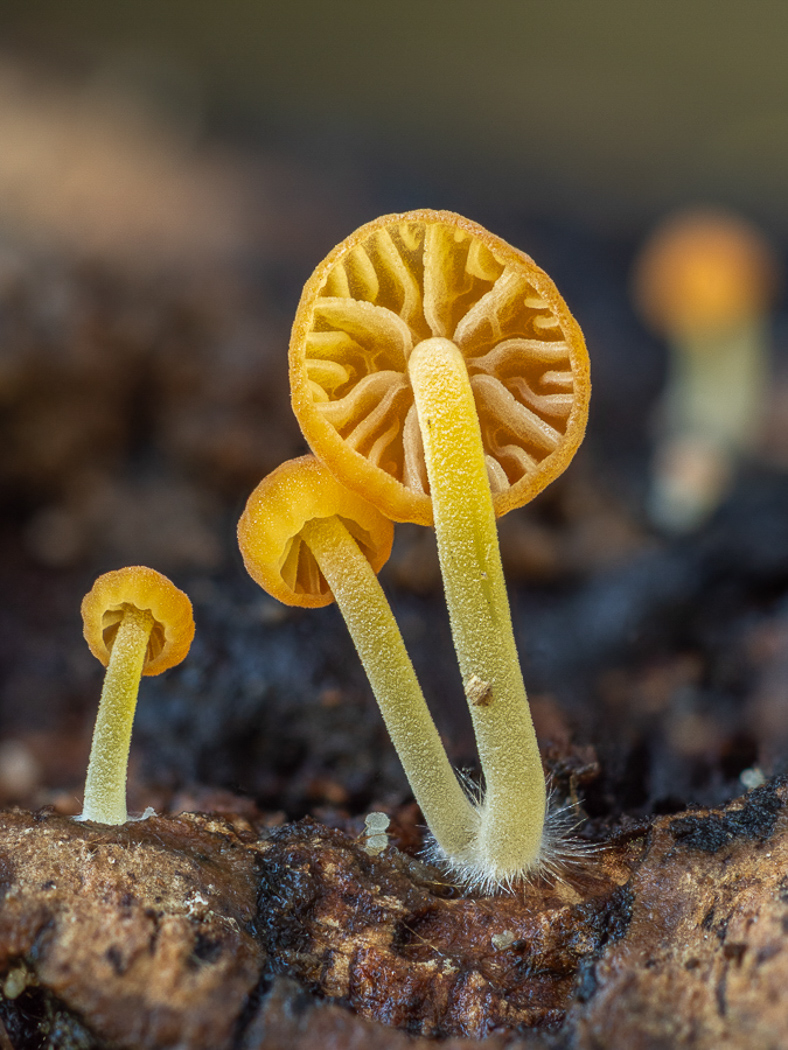 |
September 20th Mycena acicula (Orange Bonnet)
Barry Webb found this tiny and very pretty Bonnet in Hedgerley Green. Caps are only 5 mm across but despite its size the brightly coloured caps make it easy to spot amongst deciduous litter, woody debris. Note the yellow stem and hairy stem base where it attaches to the substrate. These features together with the orange cap make it possible to name in the field. (See also under Sept 29 where it was found together with Mycena galericulata)
|
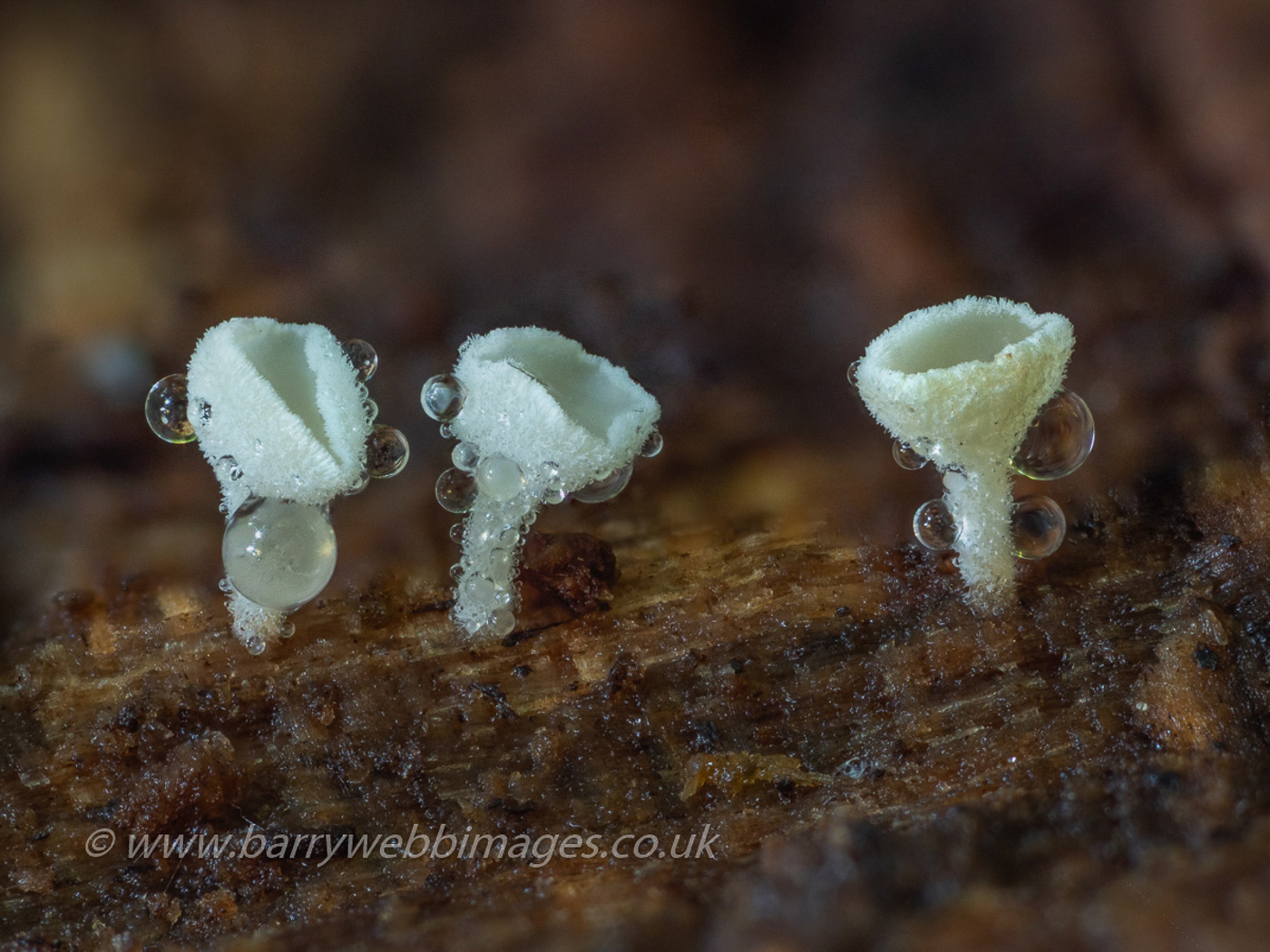 |
September 20th Lachnum niveum (a Disco very similar to Snowy Disco)
Barry Webb found these tiny stemmed white discs on rotting fallen Beech in Burnham Beeches. Lachnum is a large Ascomycete genus of tiny fruit bodies, this one less than 1.5 mm tall. There are several common very similar tiny white species which often form large colonies on rotting wood, and to be certain which you have they should be checked with a scope. However, typical of this particular species are the droplets which adhere between the fine hairs on the stem and outer surface of the disc, clearly visible here. So an identification not 100% but likely!
|
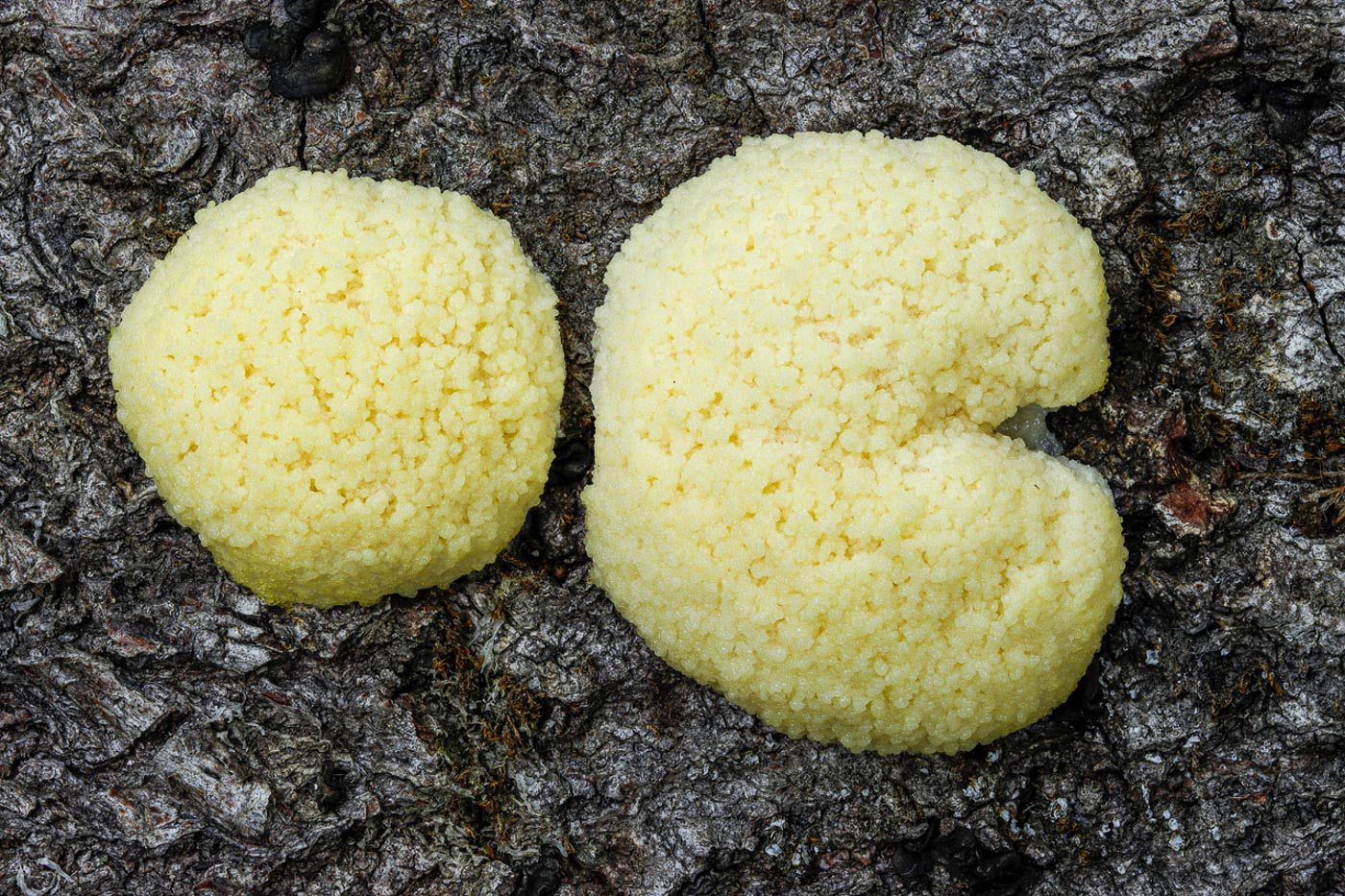
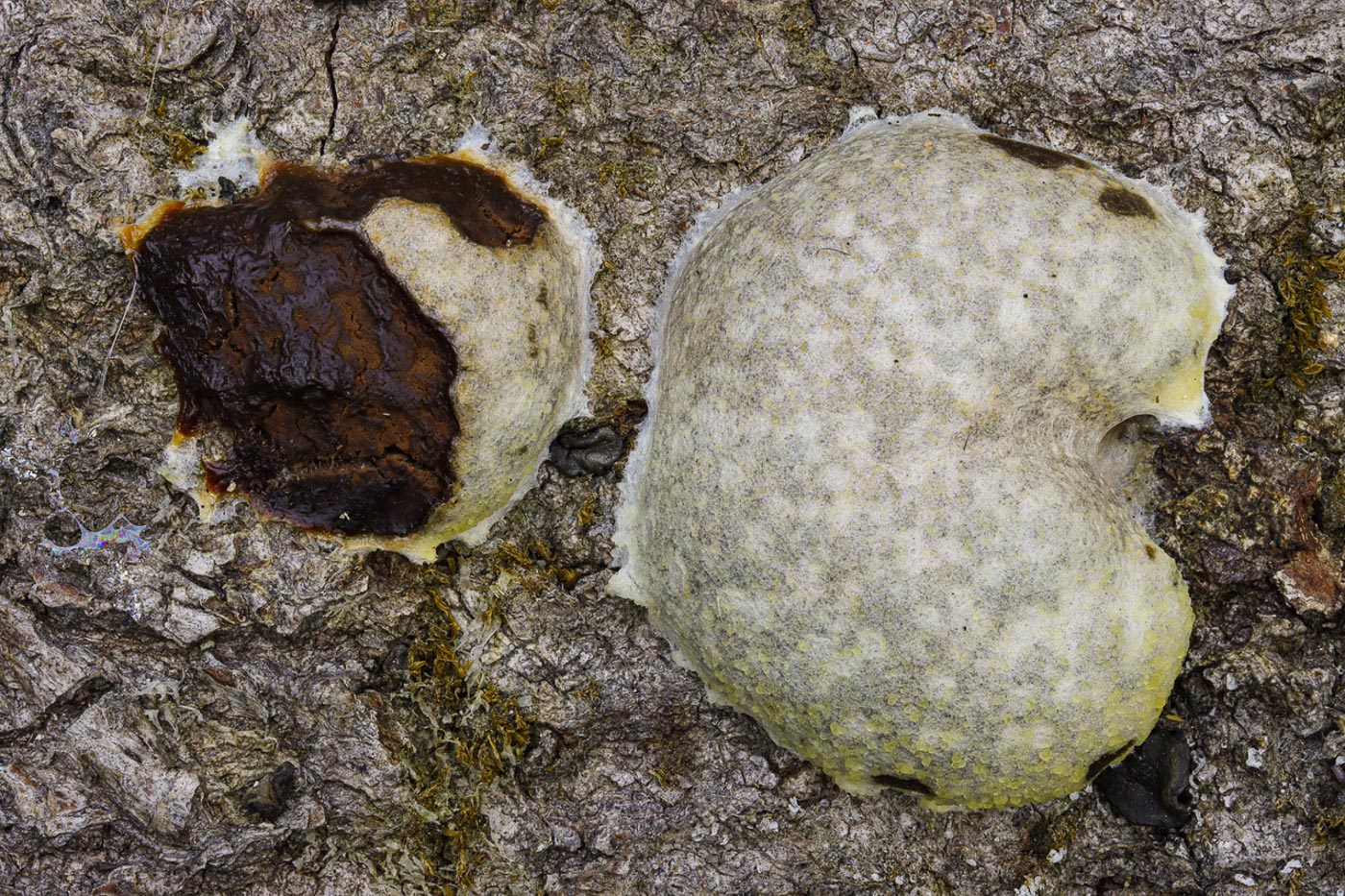 |
September 20th Reticularia lycoperdon (False Puffball)
This slime mould was first noticed by Paul Goby on a Beech log in Naphill Common two days earlier (see first photo) when at the slimy undeveloped stage and still unidentifiable (ie looking exactly like many others). He was surprised to find how different it appeared today! It is only once a slime mould has dried off and taken its final form that spores and other microscopic features reveal its identity. This particular species, forming a round white blob about 4cm across with a skin which breaks down to allow the brown spore mass to disperse, can be named in the field once at this stage.
|
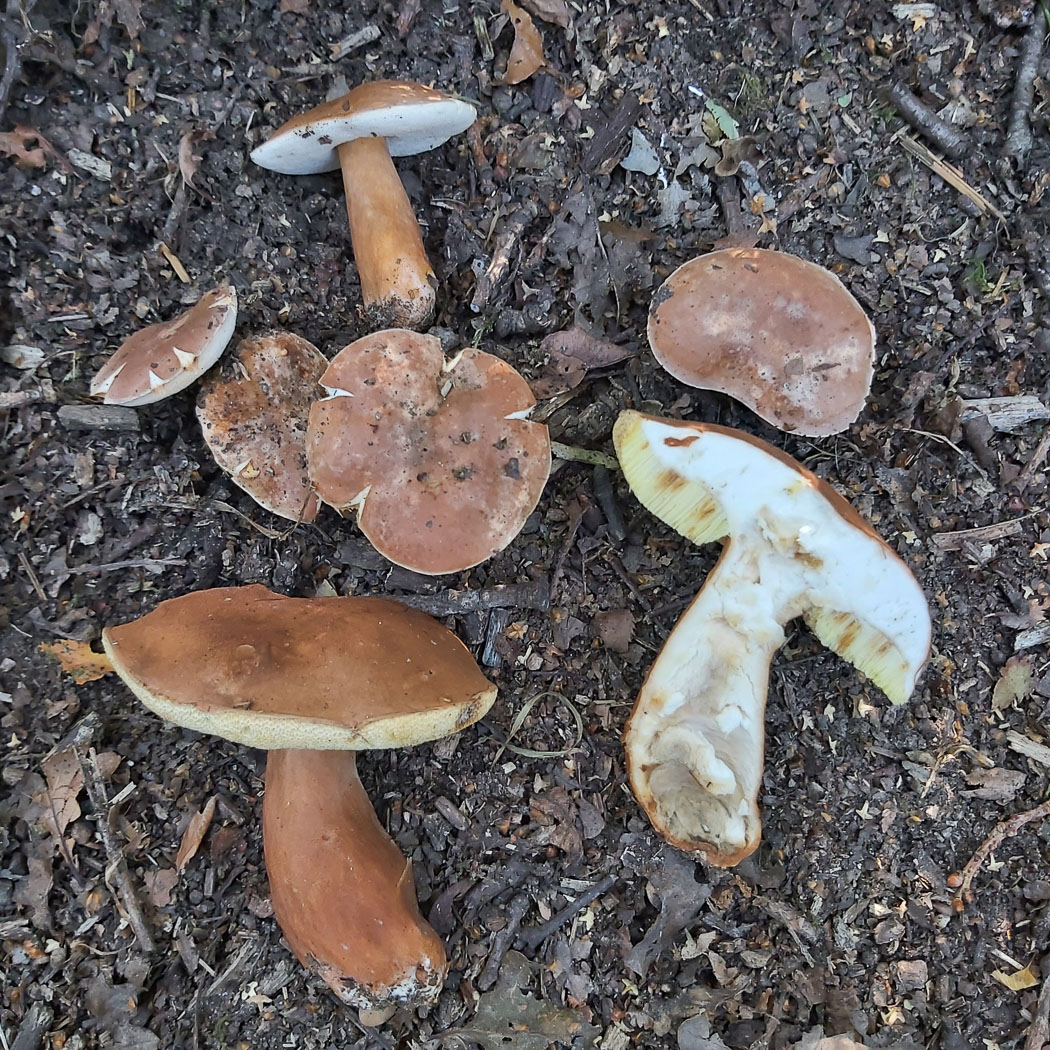 |
September 20th Gyroporus castaneus (Chestnut Bolete)
Jesper Launder found this uncommon bolete under Oaks at Hodgemoor Wood where it occurs fairly regularly. It is one of the easiest boletes to recognise in the field, having a flattish, firm and smooth chestnut brown cap and a stem to match with pale whitish pores which don't blue when pressed. The stem tends to become hollow and if cut lengthways then shows cavities within. It occurs under Oak and Sweet Chestnut.
|
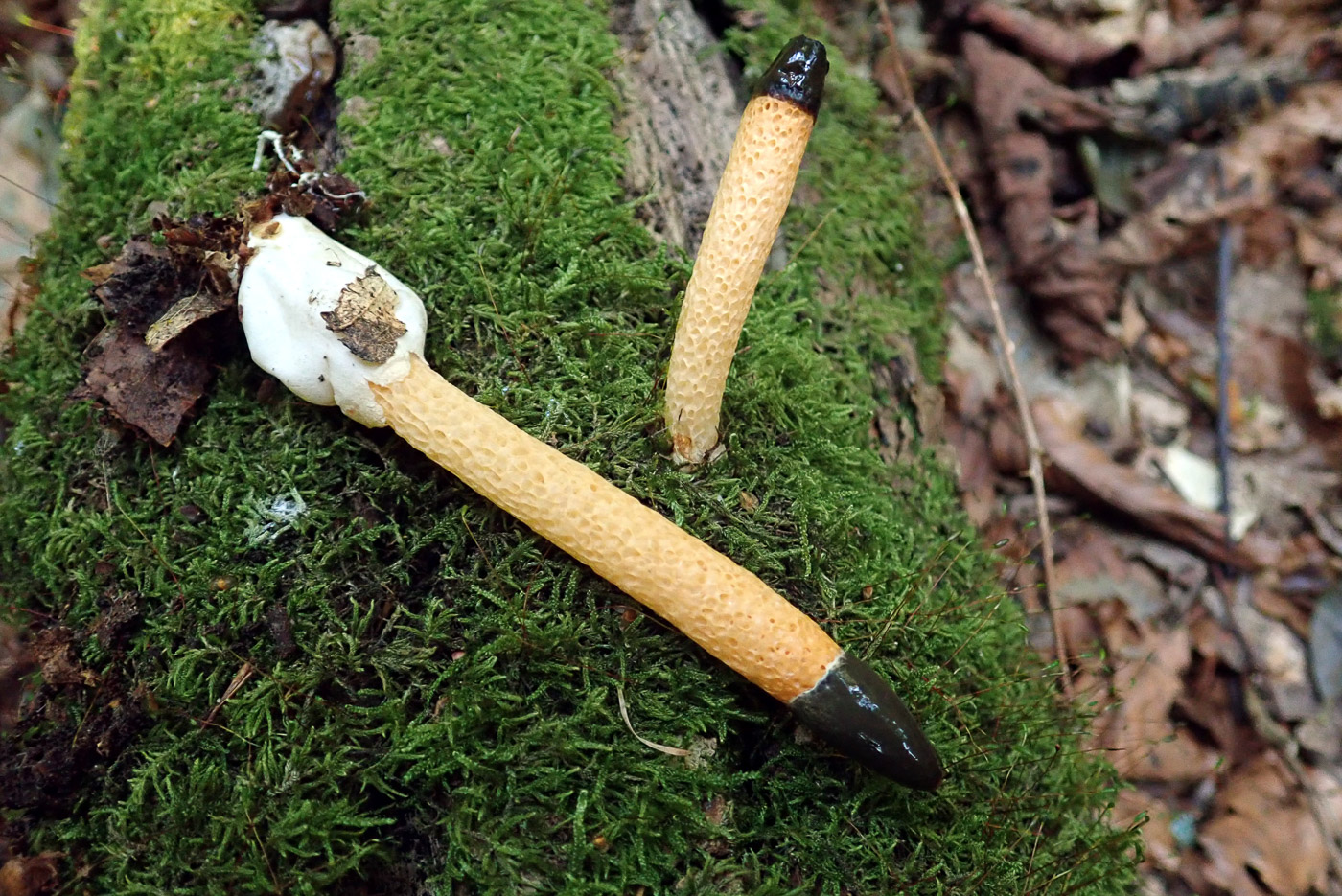
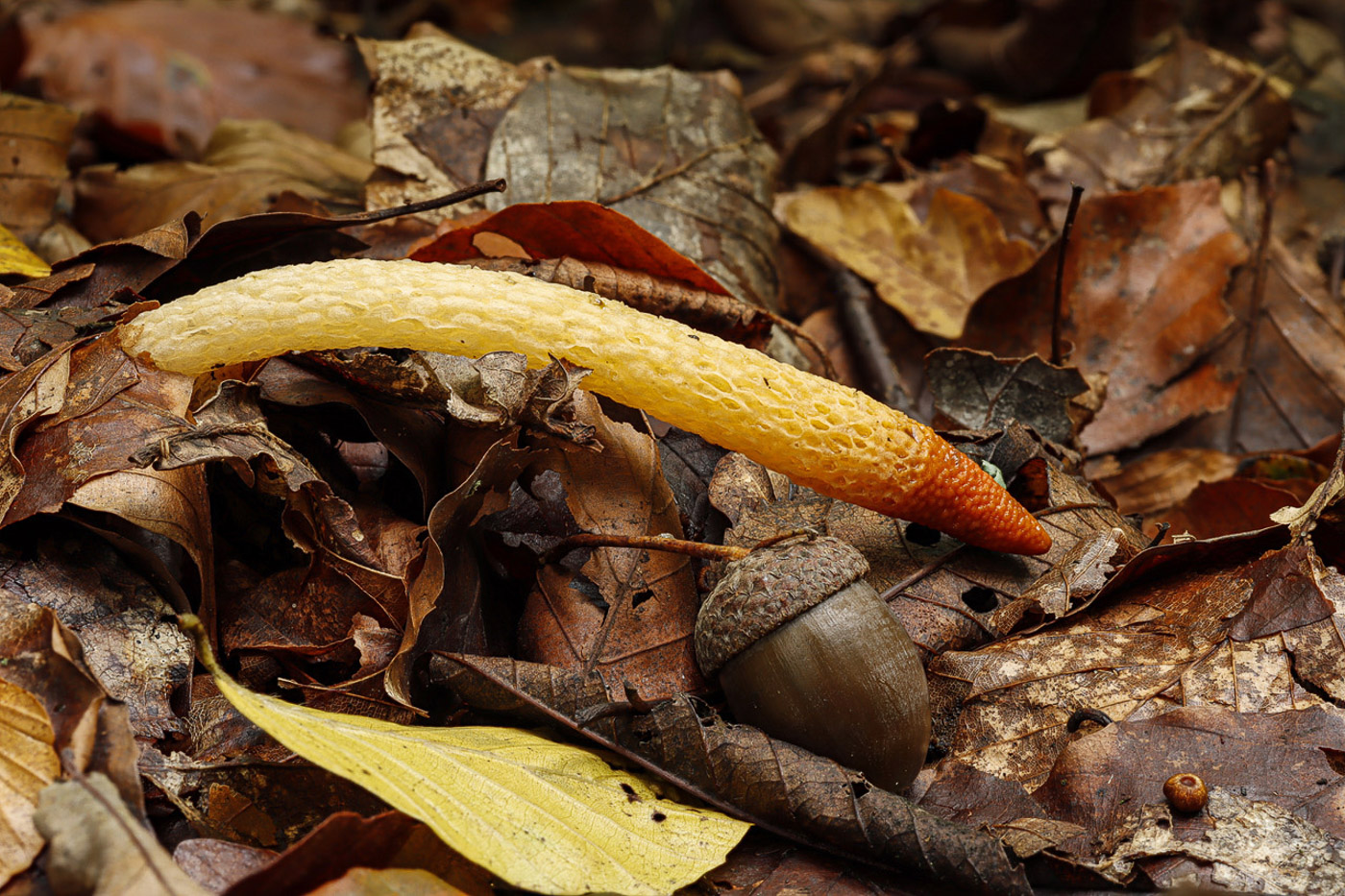
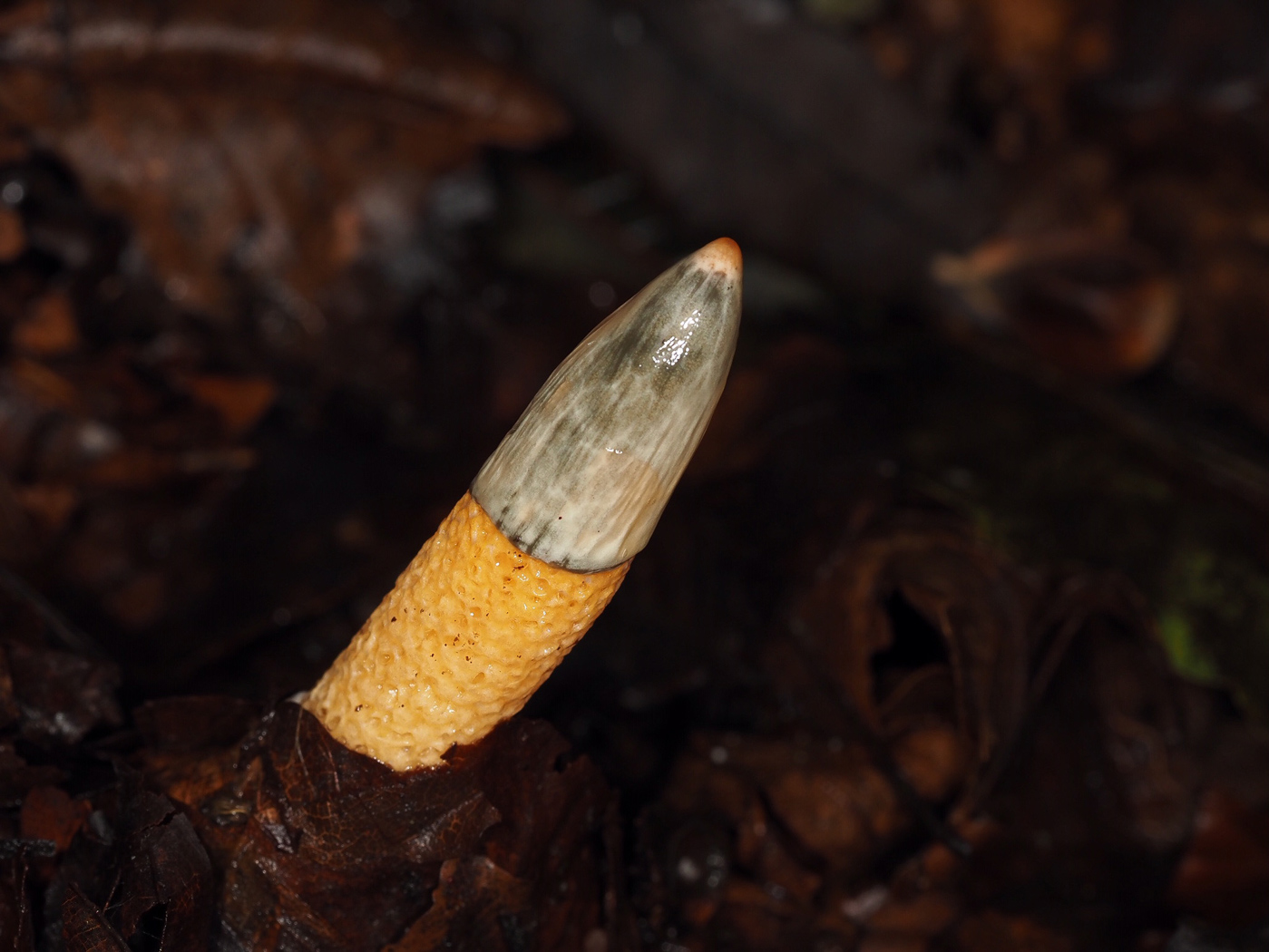 |
September 20th Mutinus caninus (Dog Stinkhorn)
This was found in Pullingshill Wood by Penny Cullington, the smaller specimen unusually actually growing out of the top of a mossy log as seen. Much smaller and also less common than our other Stinkhorn, Phallus impudicus - not yet fruiting much this season, this species usually grows in leaf litter and arises from a white 'egg' which ruptures as the stem expands and develops the dark sticky spore-bearing top which has a smell which attracts flies which then disperse the spores. This smell is insignificant in comparison with the extremely unpleasant smell of P. impudicus which can often be located by following ones nose! (The two later examples are from Bottom Wood, Oct 09, by Paul Goby, and the spear from Tinkers Wood, Oct 10, by Claire Williams.)
|
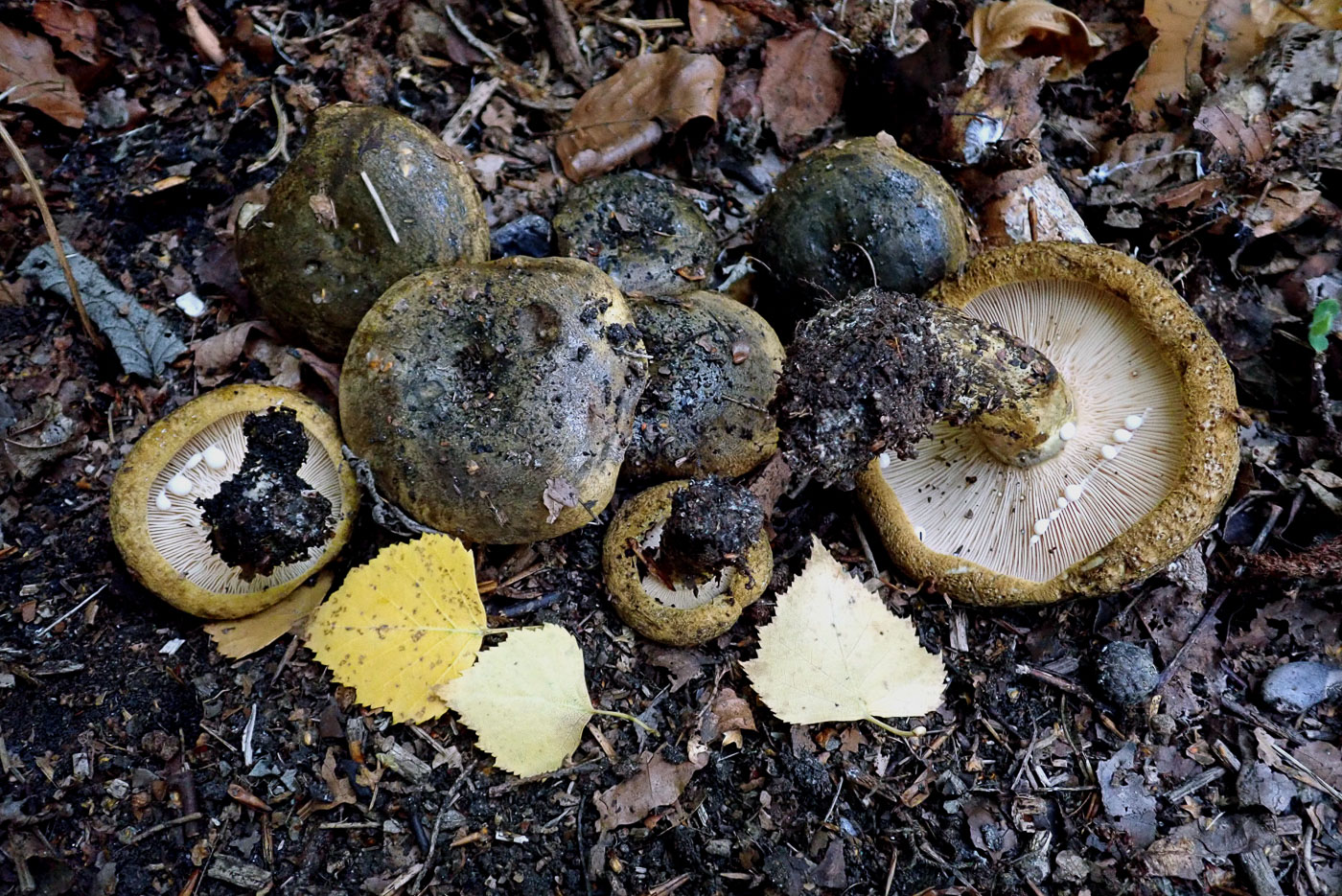 |
September 20th Lactarius turpis (Ugly Milkcap)
Penny Cullington found this collection growing under Birch (with which they are host specific) at Pullingshill Wood. The cap colouring and short stem of this common species tend to make it well camouflaged amongst the leaf litter and easily missed. Once a fruit body is turned over the strongly inrolled cap is reminiscent of young specimens of the Brown Rollrim (a completely unrelated species), but the gills are much paler and not decurrent as in that species. Damaging the gills quickly produces copious milk which literally drips from the cap - even today when conditions were extremely dry.
|
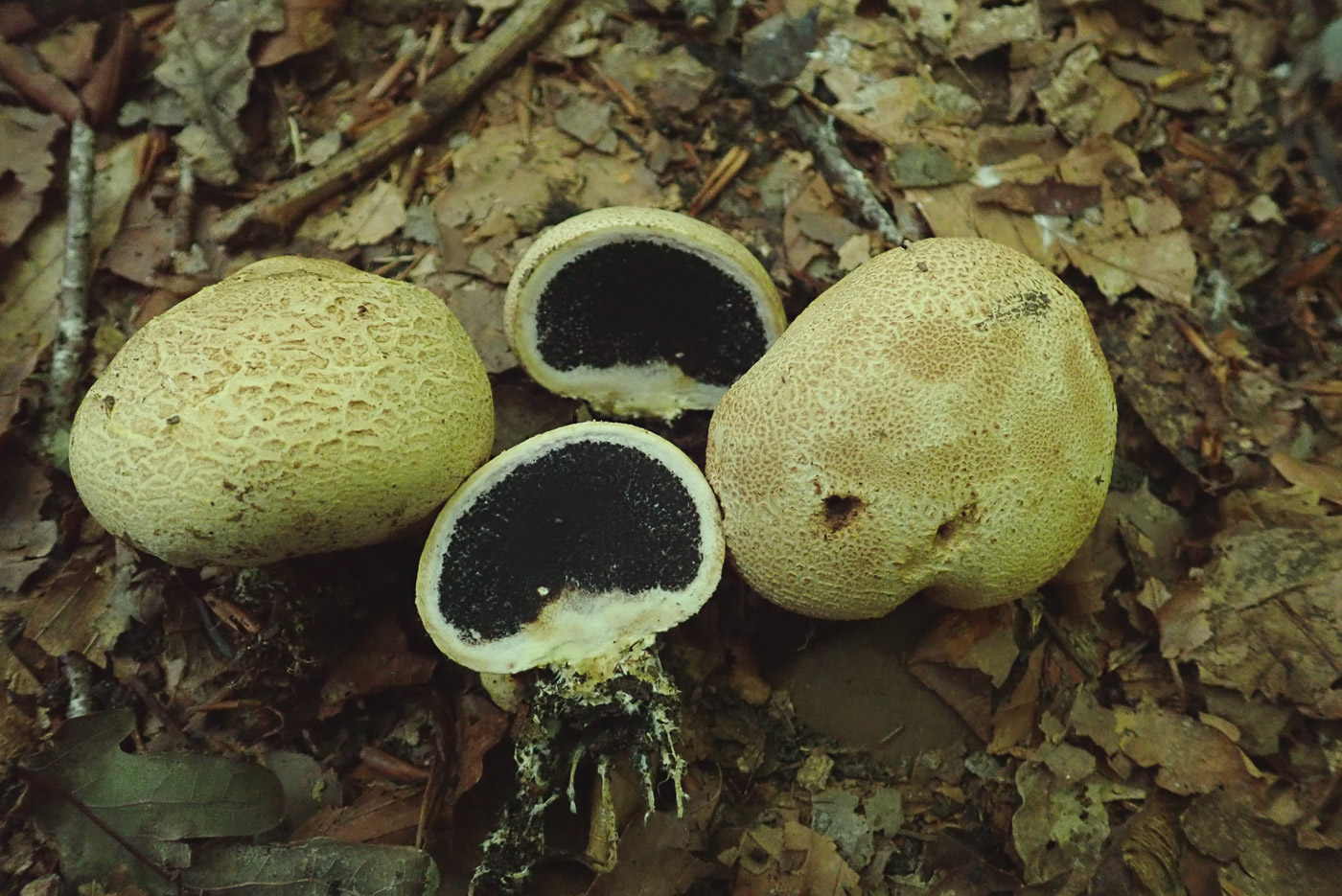 |
September 20th Scleroderma citrinum (Common Earthball)
This collection was growing under Oak at Pullingshill Wood, found by Penny Cullington. Our second Earthball photo, this species is the easiest in the genus to recognise as it's our only yellow Earthball. These were young specimens, only about 4 cm across, but they can get considerably larger and also considerably more roughened and scalier. Note (a) the thick rindlike skin and (b) the contrasting dark inner part even when young, visible in the specimen cut in half, both features which help to separate Earthballs from Puffballs which have a thin skin and are white inside when young (though do go darker inside when mature). Earthballs have a strong rubbery smell whereas Puffballs have a pleasant 'mushroomy' smell.
|
September 19th 2020
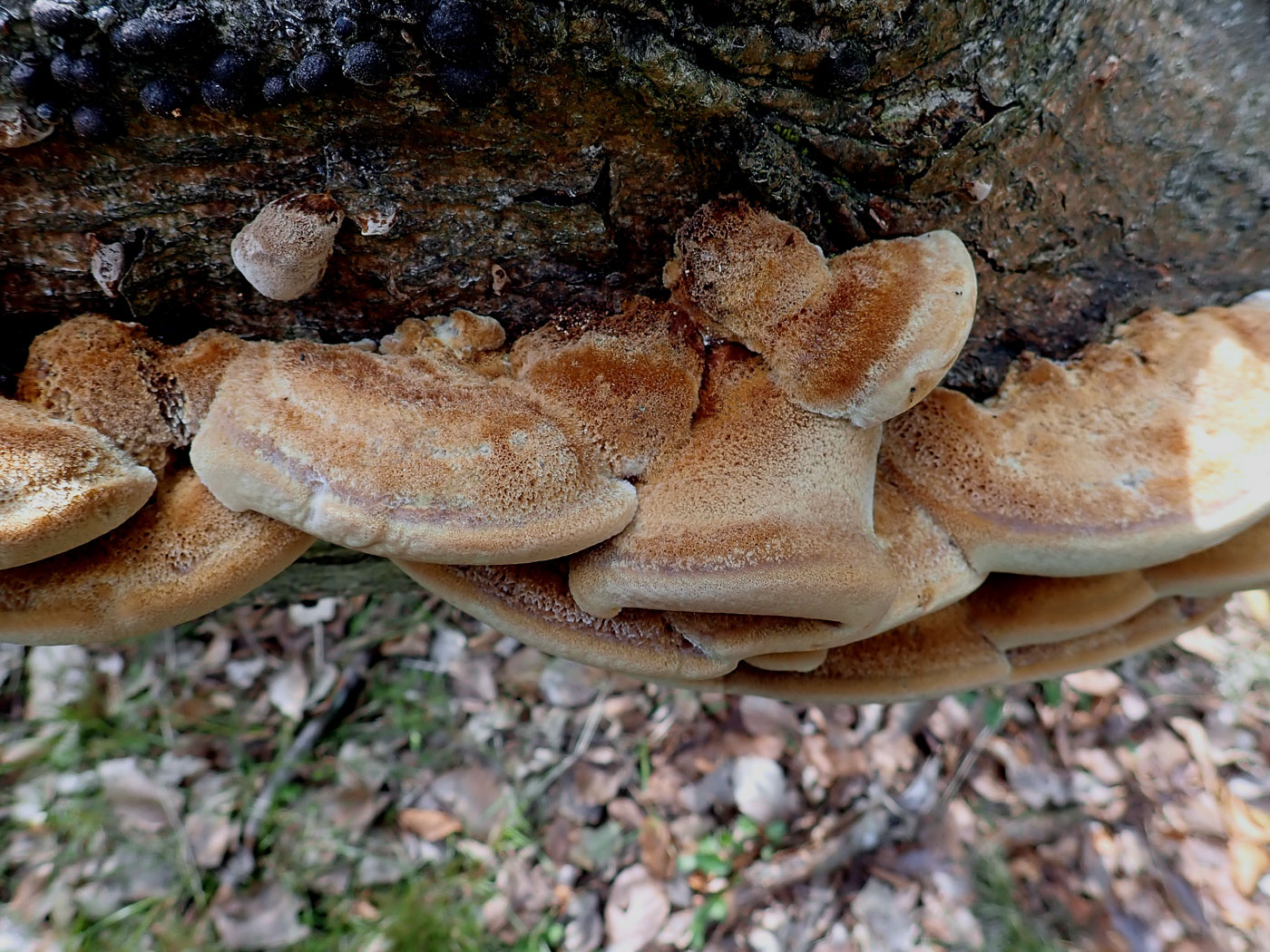
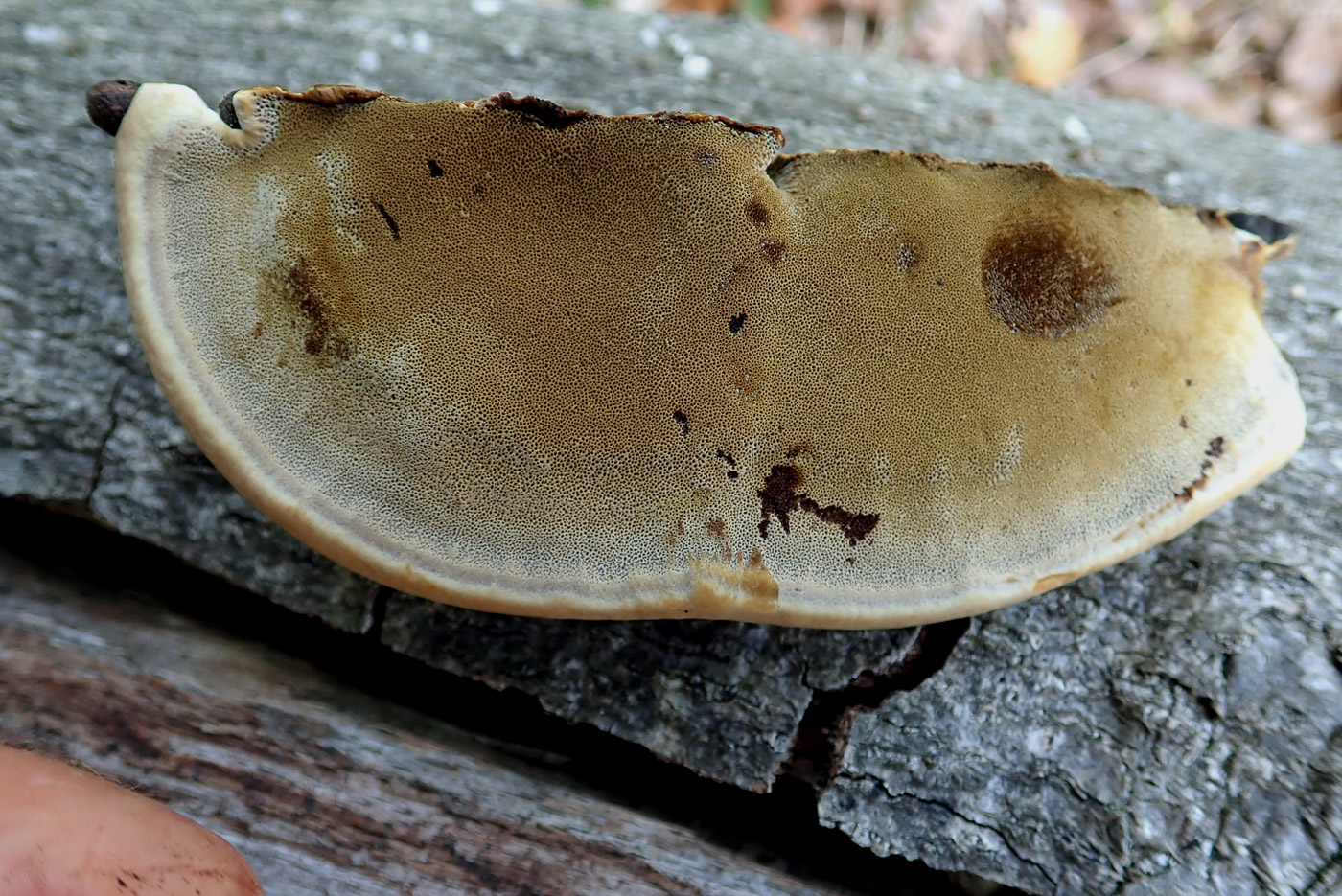 |
September 19th Inonotus cuticularis (Clustered Bracket)
Penny Cullington found this bracket growing on fallen Beech in Penn Wood. This is quite an uncommon bracket and is unusually soft to the touch with a velvety finely hairy upper surface; it tends to grow in overlapping tiers along the substrate. The fine pores underneath have an olive brown tone which glances in the light and bruises darker when you press it, this seen in the second photo here.
|
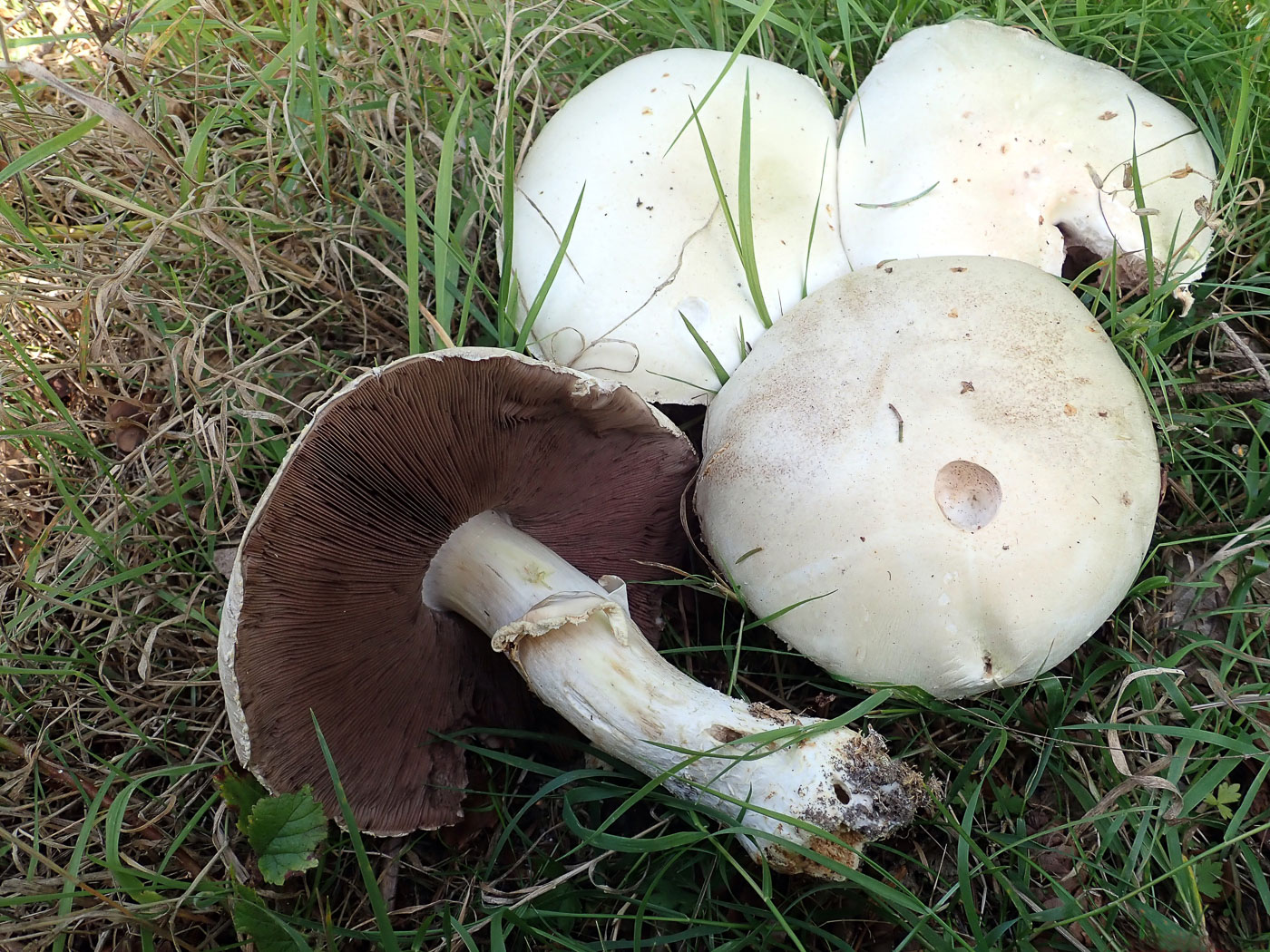
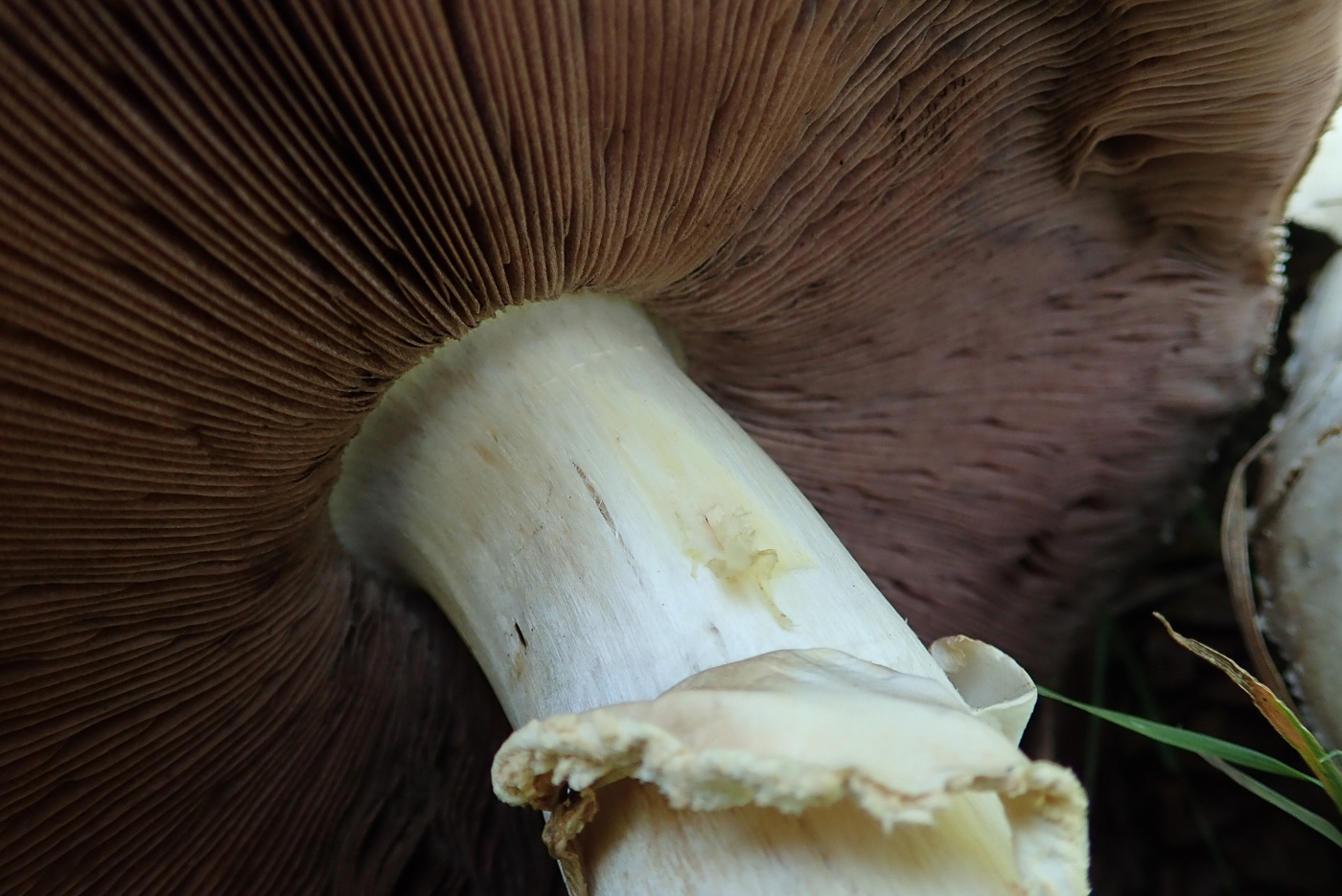 |
September 19th Agaricus arvensis (Horse Mushroom)
Penny Cullington found this collection in a grassy area in Penn Wood. These were good sized fruit bodies with caps about 12 cm across, and under moister conditions they would have gradually stained yellow where damaged. Today's were too dry and showed little change where I scratched them either on the caps or the stem. Note the free gills and ring on the stem visible in the second photo.
|
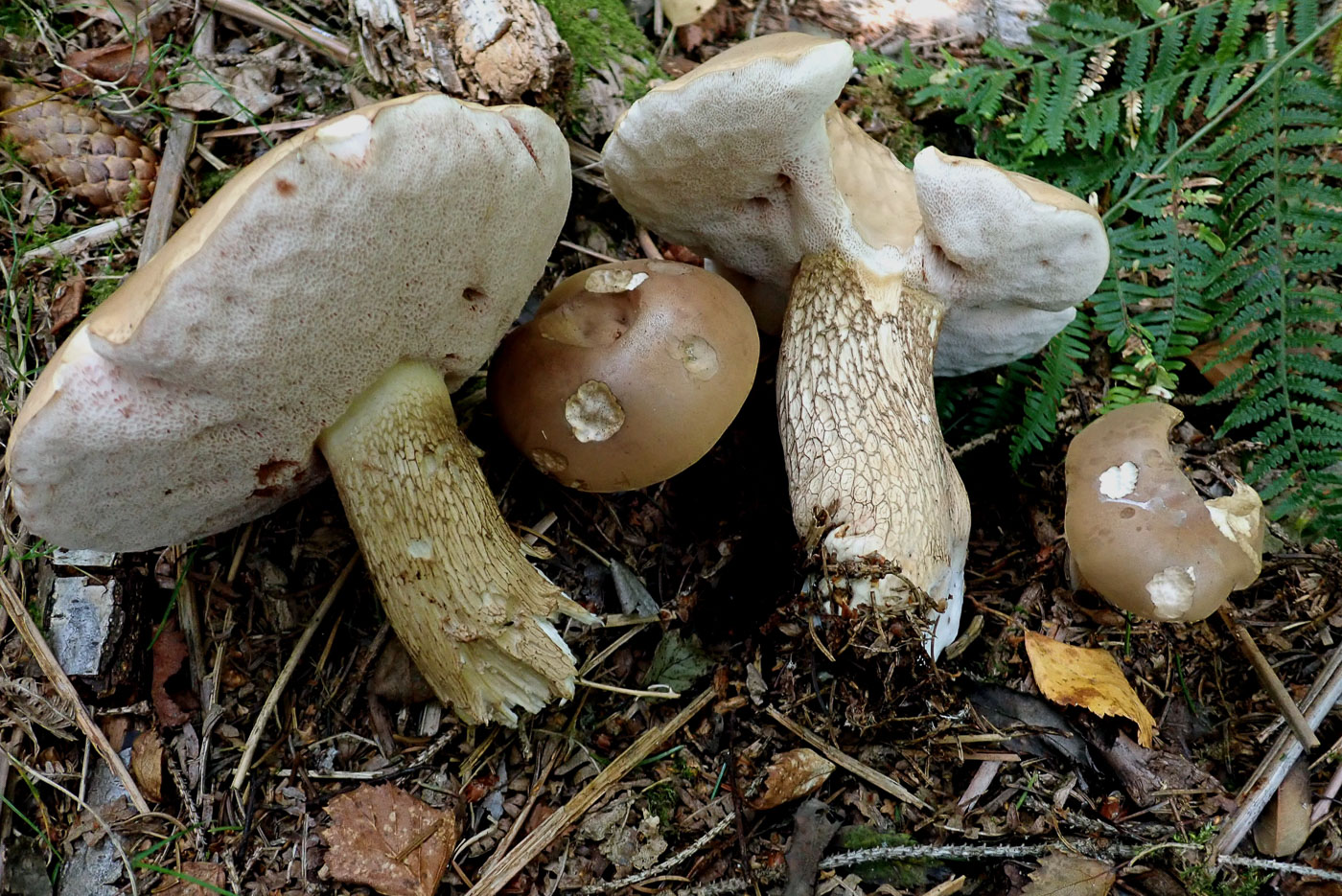
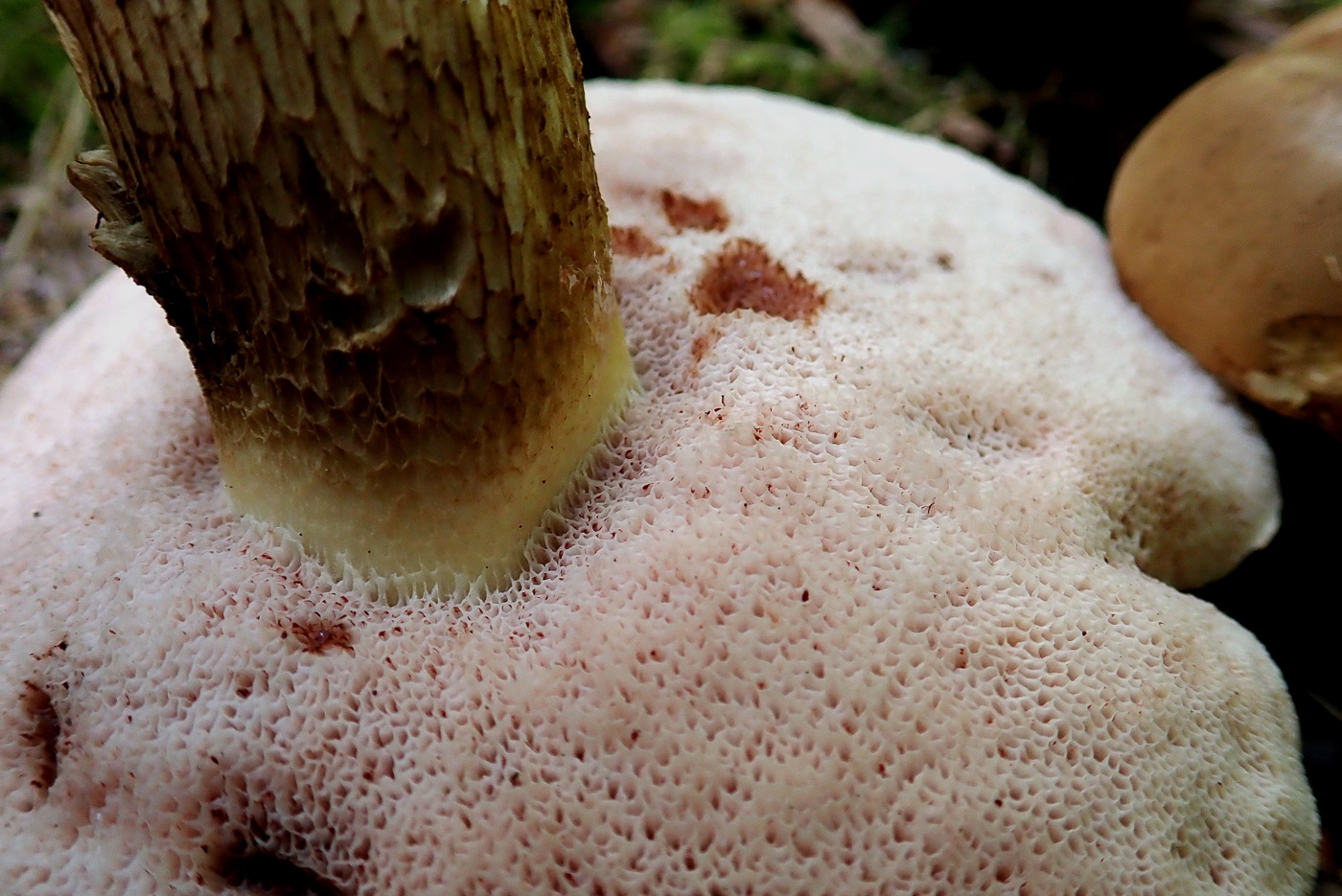
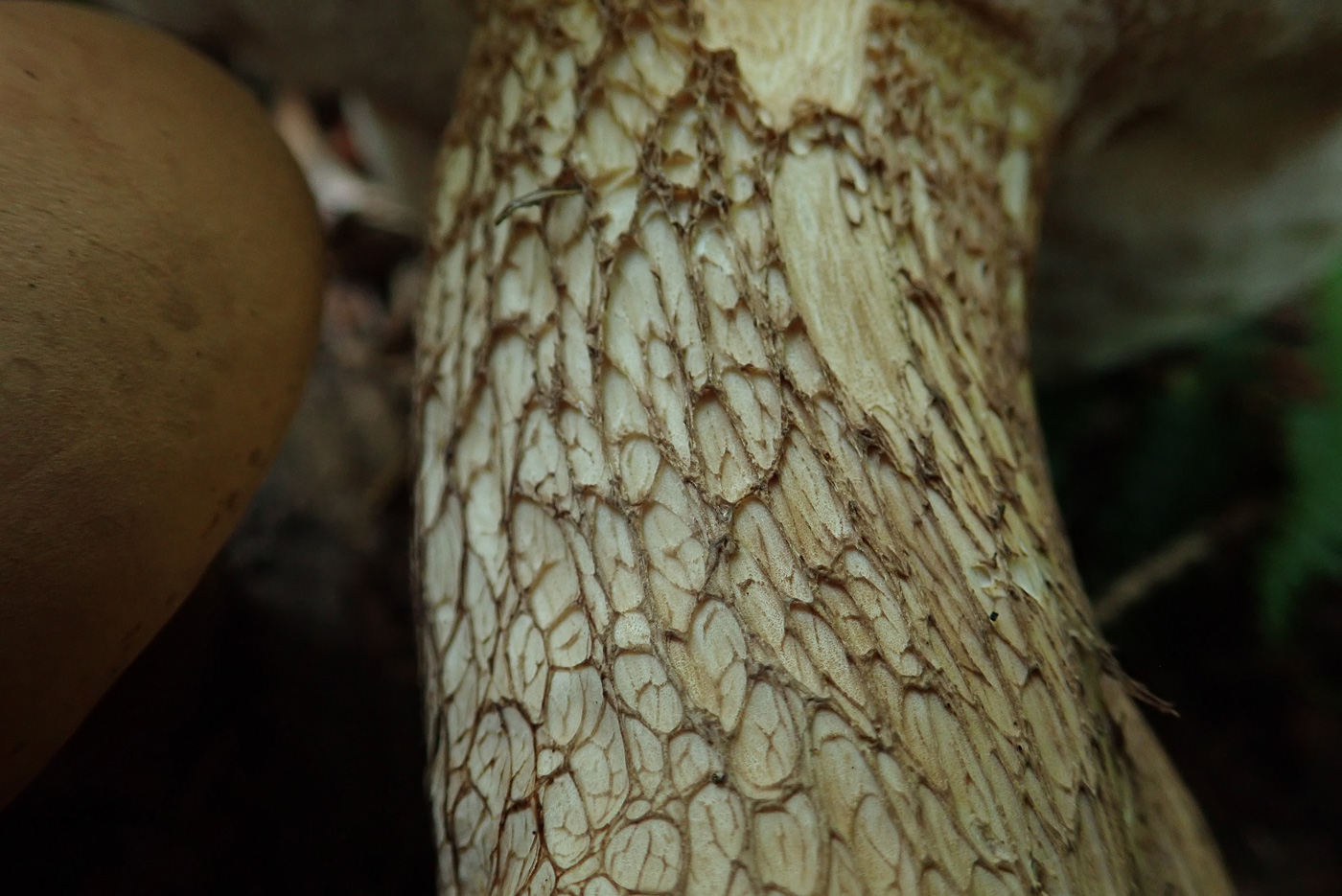 |
September 19th Tylopilus felleus (Bitter Bolete)
An occasional bolete, this collection was growing under Douglas Fir in Penn Wood, found by Penny Cullington. On first noticing the large caps, about 13 cm across, she thought she'd found Boletus edulis but turning one over revealed the pores turning a shade of pink, especially where damaged, and the marked reticulation on the stem, both features diagnostic of the Bitter Bolete (which, also unlike B. edulis, has a bitter taste as the name suggests). Though under conifer today, it more often occurs under deciduous trees, especially Beech.
|
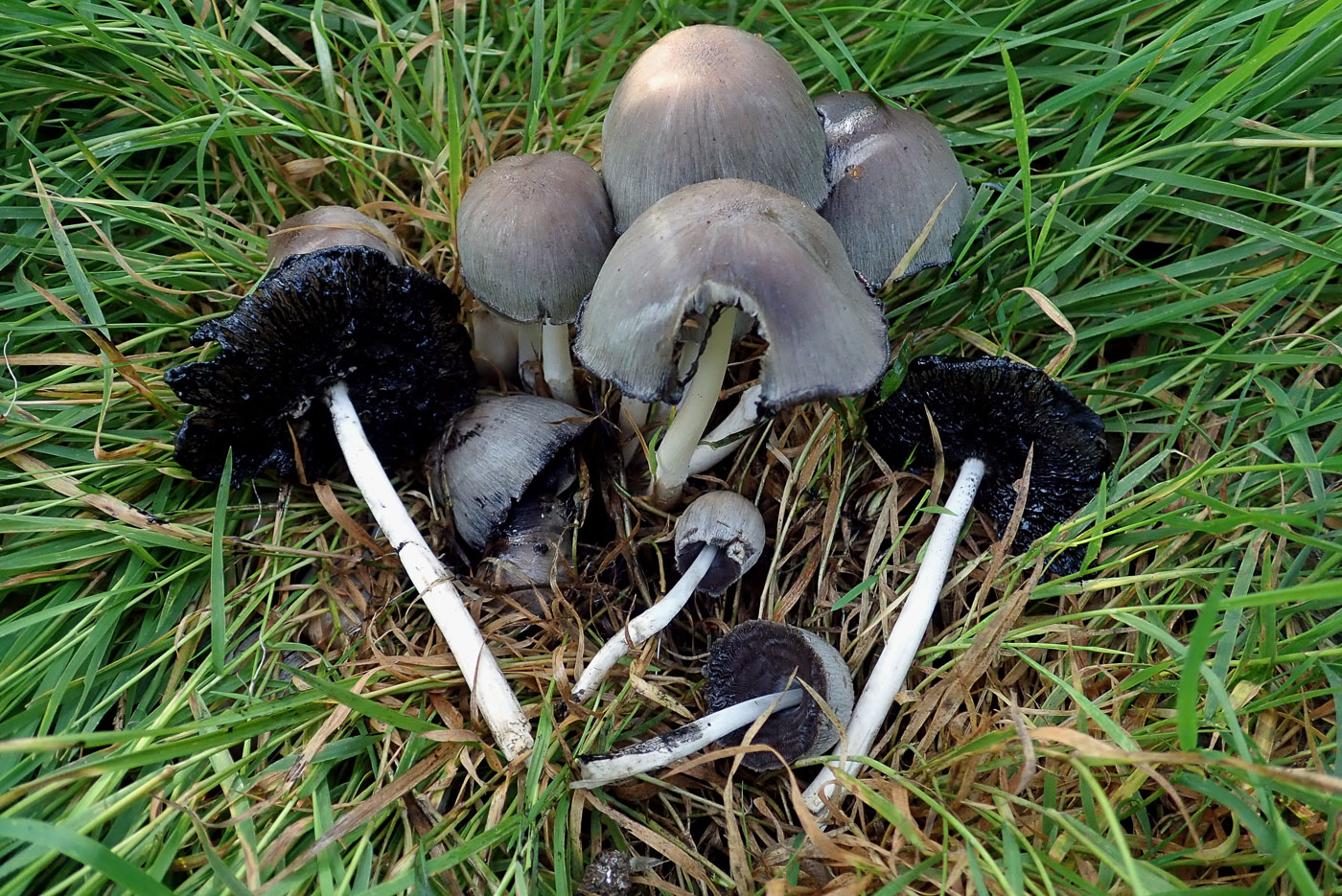 |
September 19th Coprinopsis atramentaria (Common Inkcap)
This collection was found growing in grass at Penn Wood by Penny Cullington. Quite a large Inkcap (the largest caps here were about 5 cm across), it quickly matures and then deliquesces (dissolves into a black mess). The two older fruit bodies either side were well passed their sell-by date and left Penny's hands suitably black.
|
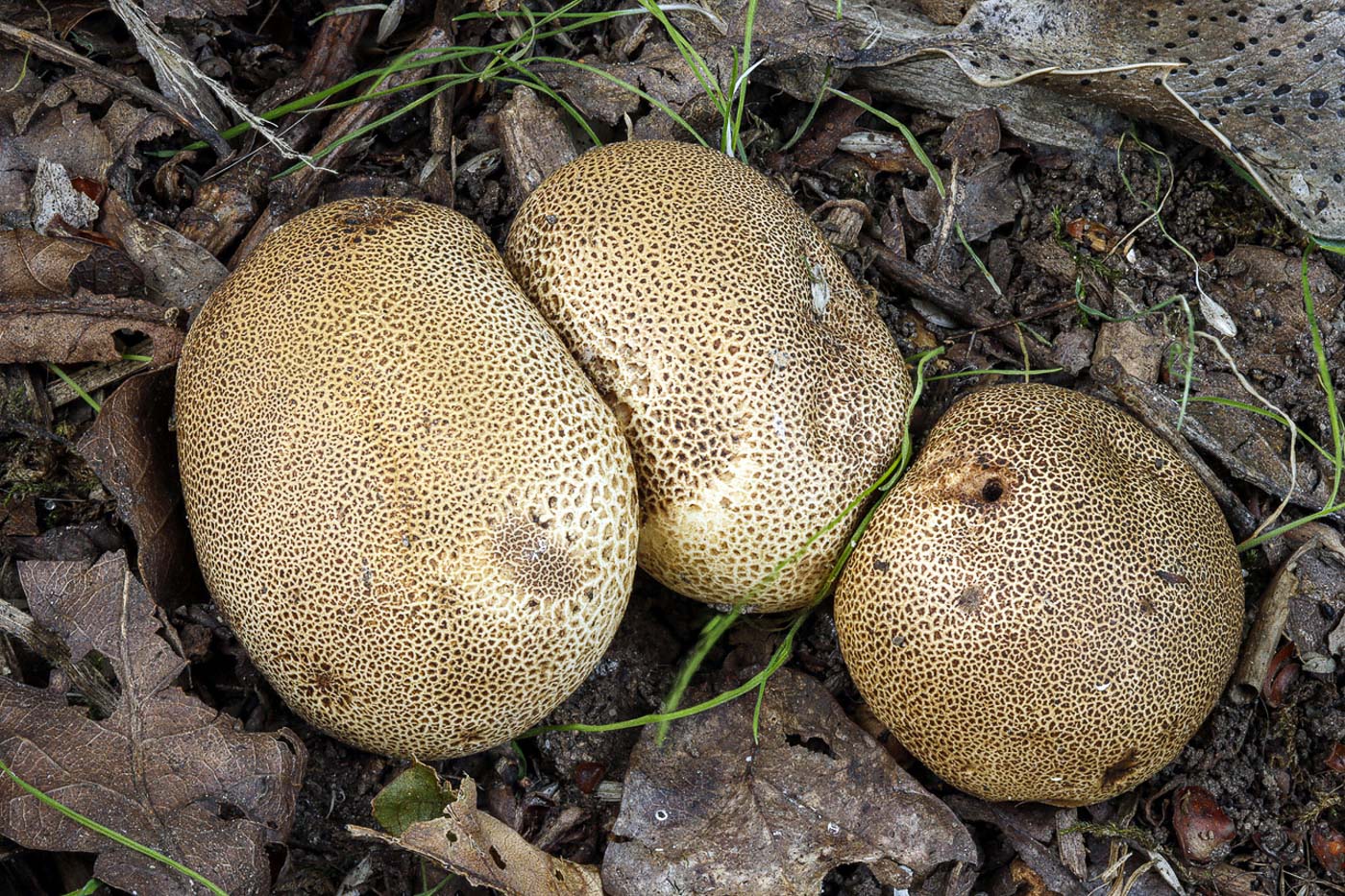
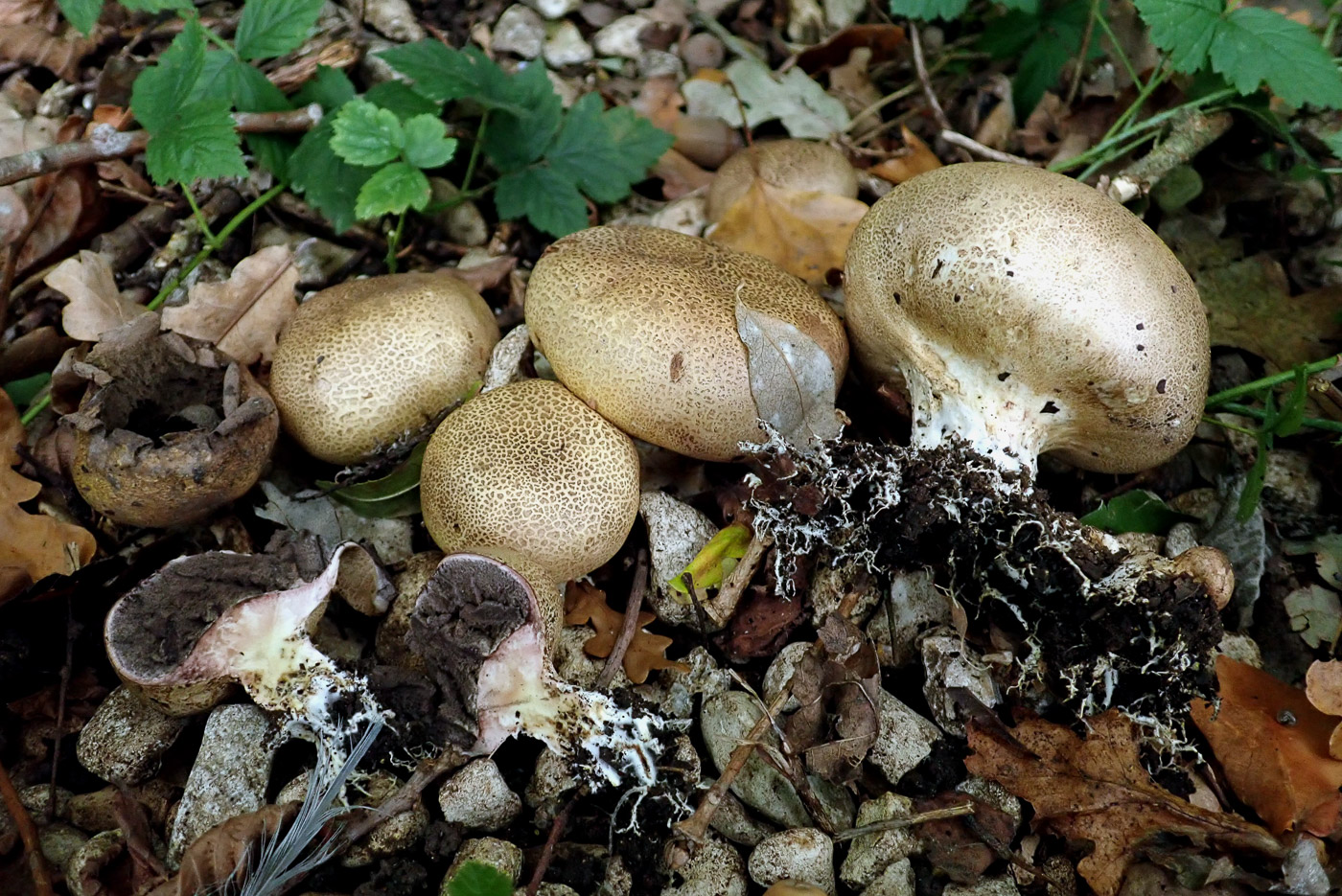 |
September 19th Scleroderma verrucosum (Scaly Earthball)
Our first Earthballs of the season, this collection was found by Paul Goby in Naphill Common growing in soil under mixed trees. Often mistaken for Puffballs, there are three common species of Earthball, all associating with deciduous trees. Differences to look for: Earth balls are never white when young, are either yellowish or brown from the start and have a thick tough outer skin, usually roughened or scaly, are not pear-shaped and are dark inside (if cut open), not white - even when young, and are generally less regular in shape. S. verrrucosum has a distinct stem, seen here in the second photo (taken on Sept 28th by Penny Cullington) which also shows how Earthballs split open when mature to disperse their spores (see LH fruit body). (Those with sharp eyes will notice the dead Holly leaf - top right - with little black spots. These are the ascomycete Phacidium lauri, previously P. multivalve.)
|
September 18th 2020
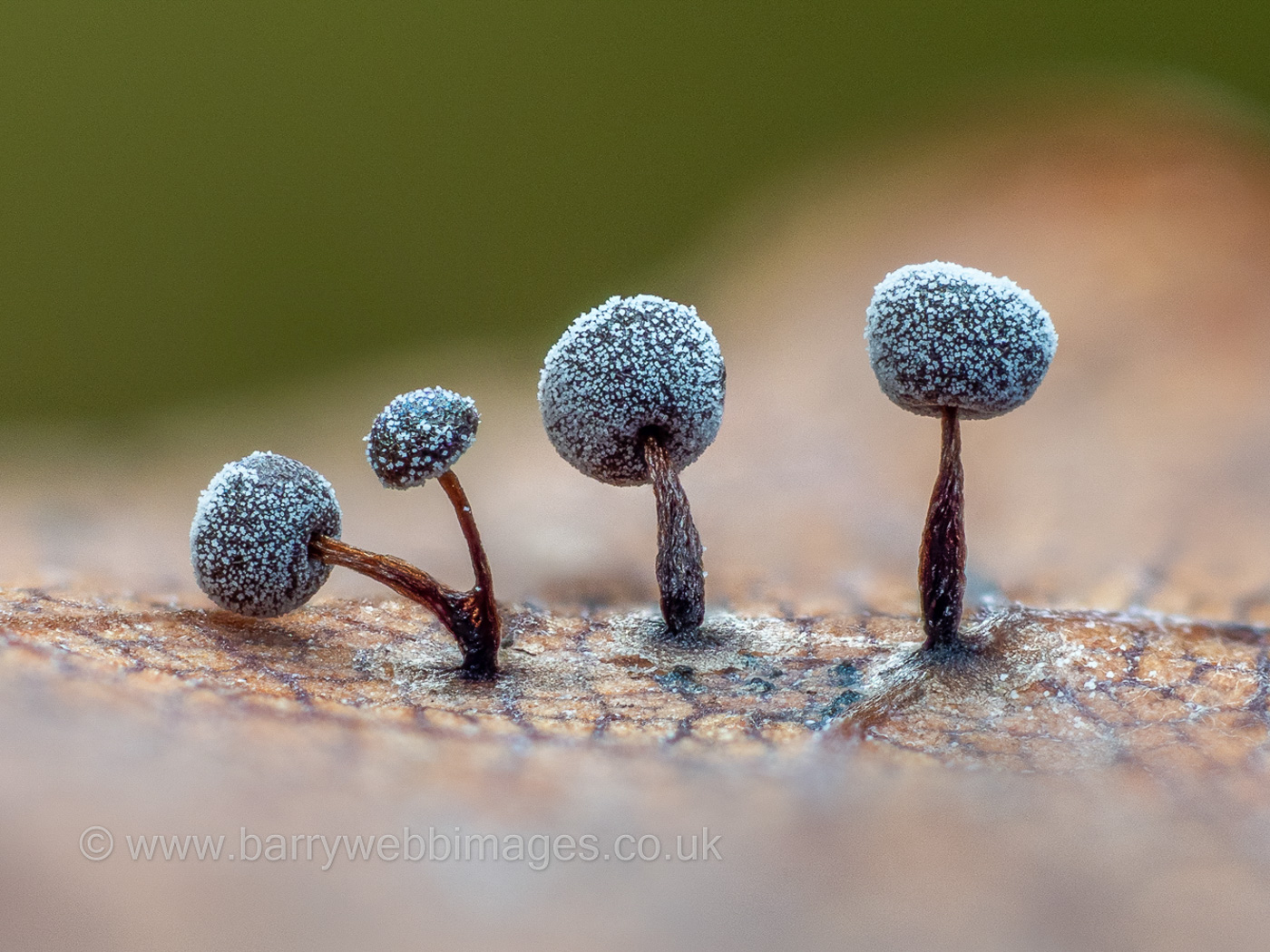 |
September 18th Didymium nigripes (a slime mould with no common name)
Barry Webb found this tiny slime mould in deciduous leaf litter in Burnham Beeches where it is new for the site though we have only one previous county record. It is described as quite common across the country though most records seem to be from the south. Didymium is a large genus, many species of which look extremely similar, but the dark stalk base is apparently diagnostic here.
|
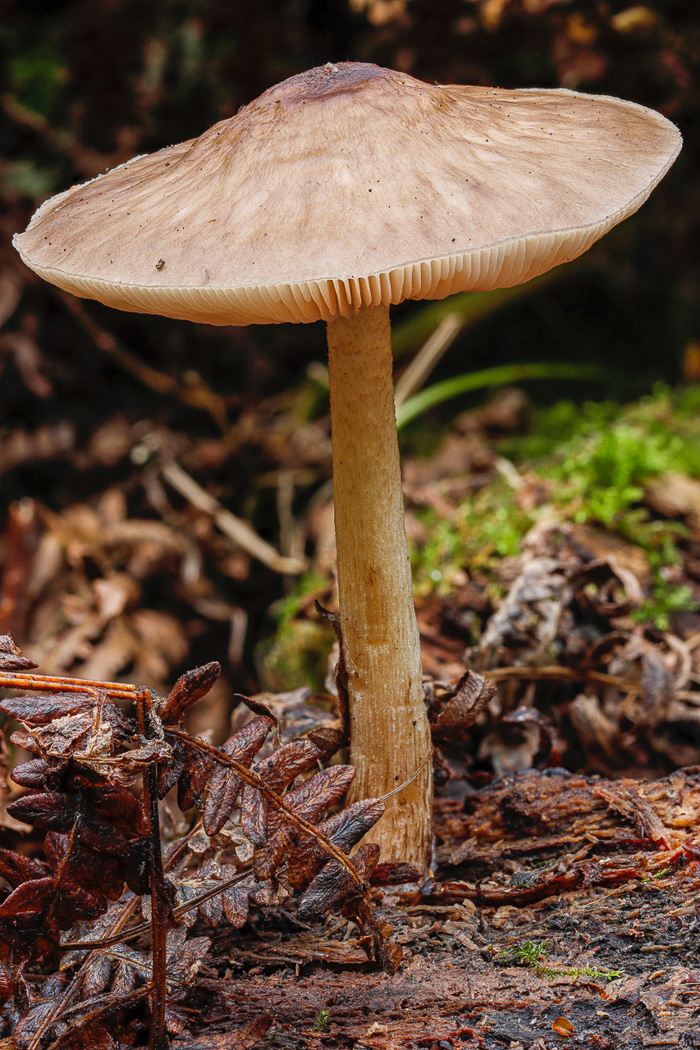
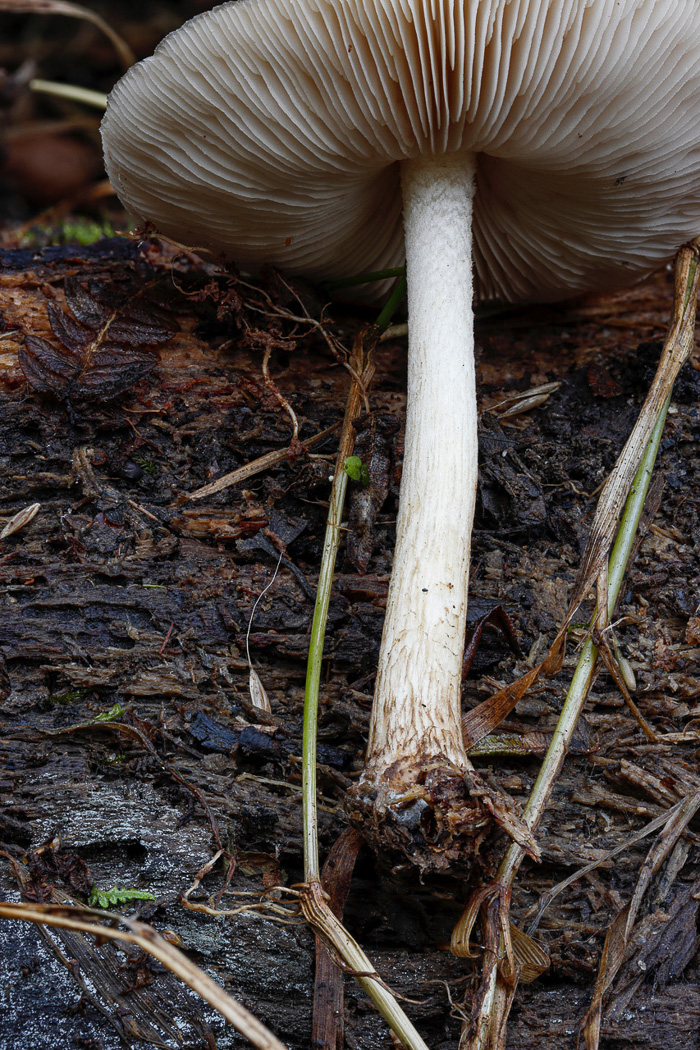
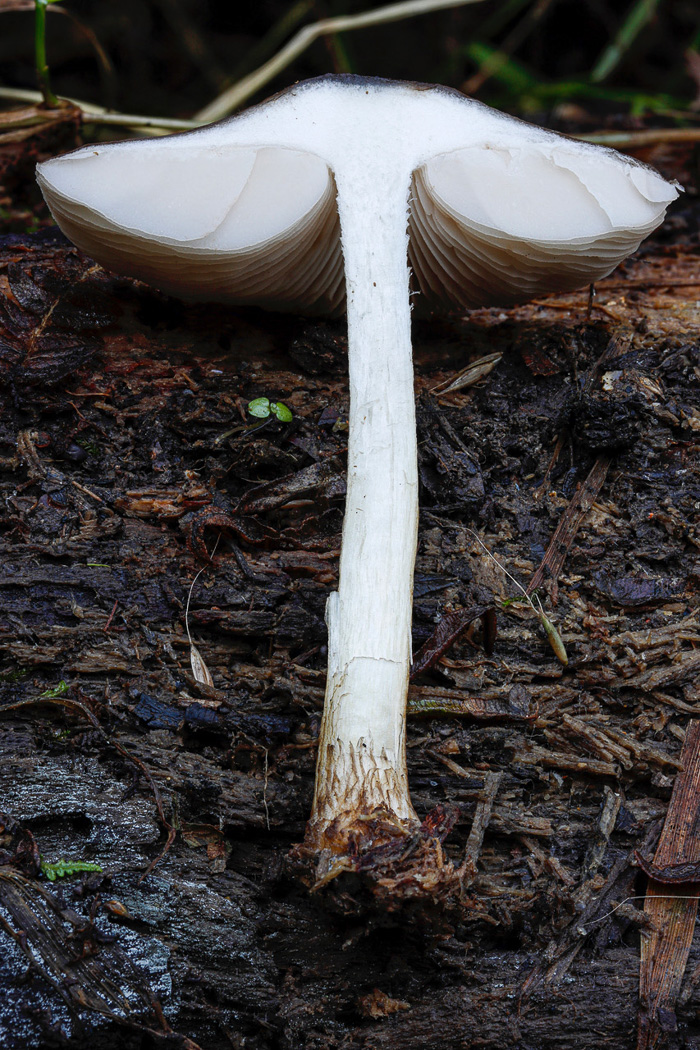 |
September 18th Pluteus cervinus (Deer Shield)
This genus has been conspicuous by its absence so far this season. Paul Goby found this specimen growing on soggy rotting wood in Naphill Common. The commonest of about 20 species of Shield, all of which need wood in some form on which to grow, it displays well the diagnostic features of the genus: crowded convex gills which start pale but gradually turn pink, also the lack of gill attachment to the top of the stem (called 'free'), a character shared also by Agaricus, Amanita and Lepiota & related genera. The cap of today's singleton was about 10 cm across. Note the free gills visible when the fruit body was split, also their pinkish colour and shape when it was upturned.
|
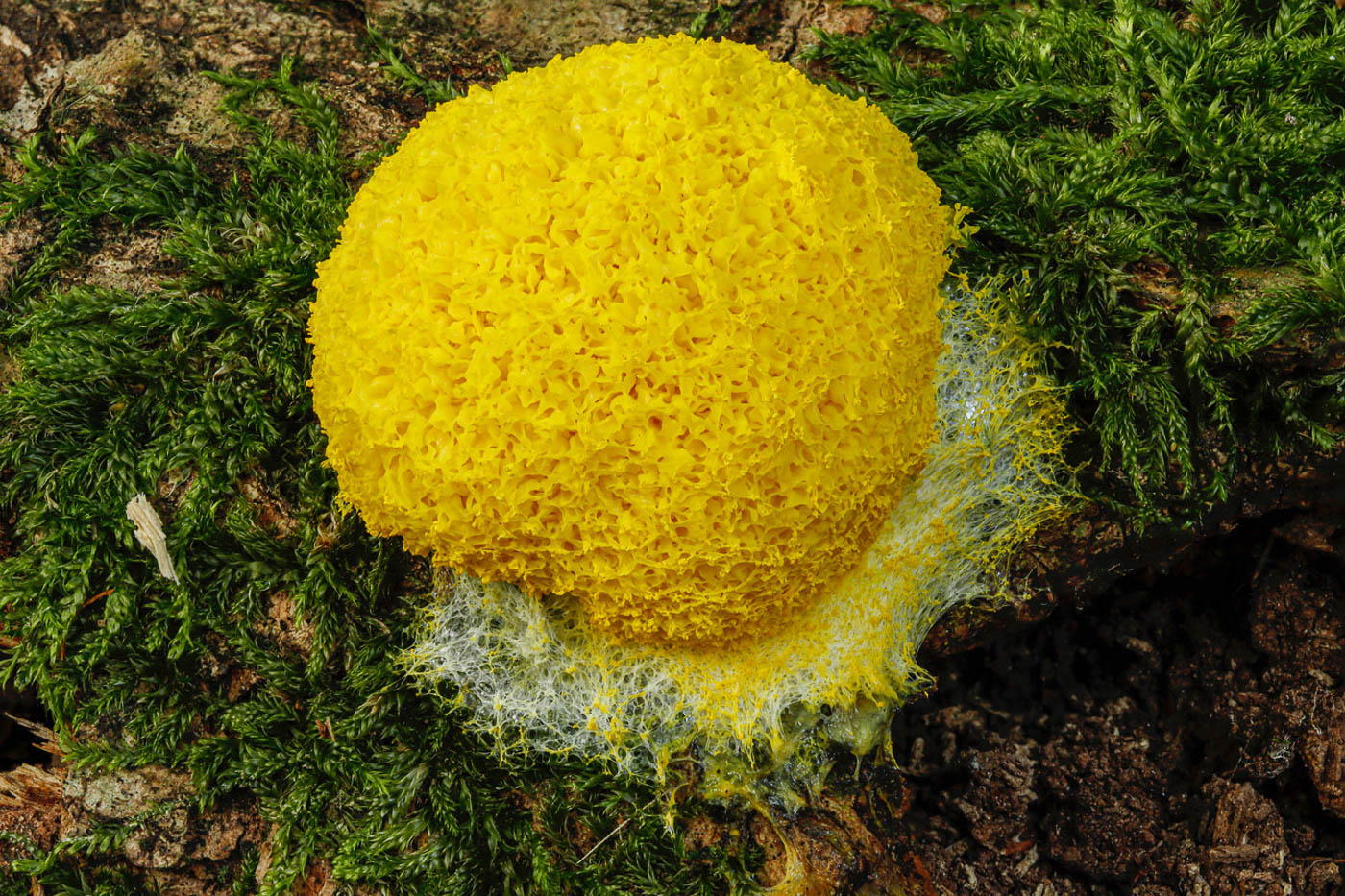
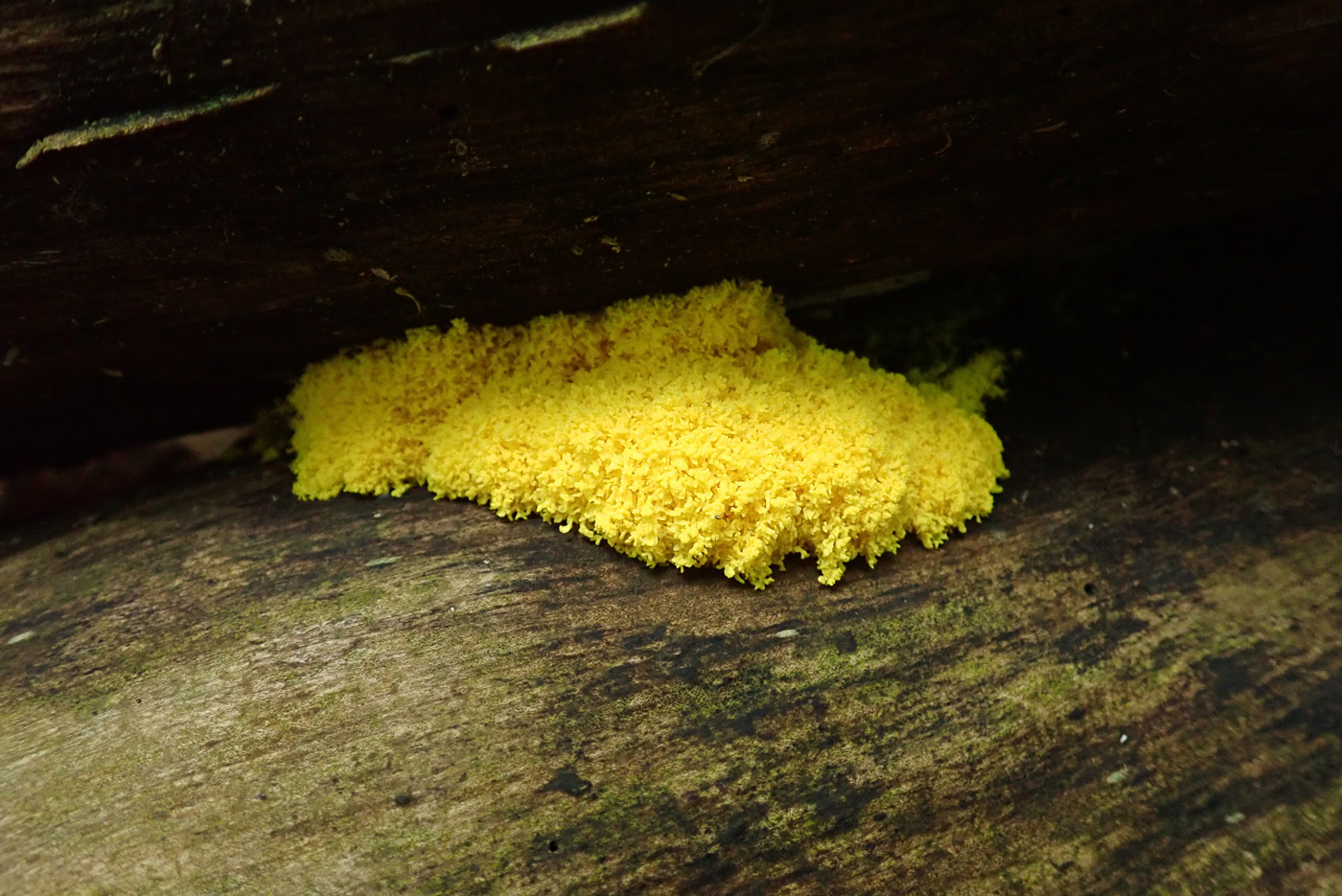 |
September 18th Fuligo septica var. flava (Scrambled Egg Slime Mould)
Our first Slime Mould photo of the season, this bright patch of yellow, about 3 cm across, caught Paul Goby's eye at Naphill Common, fruiting on fallen Beech. Slime Moulds (Myxomycetes) are in fact not fungi but are a Kingdom in their own right. However, mycologists tend to treat them as honorary fungi and record them. Very few slime moulds have common names, but this one is very apt. Few are nameable when at the early 'slimy' stage but this species is one of the exceptions: the dazzling yellow colour when fresh and in good condition is unmistakable. A second example (from Mousells Wood, Sept 24 from Penny Cullington) is included.
|
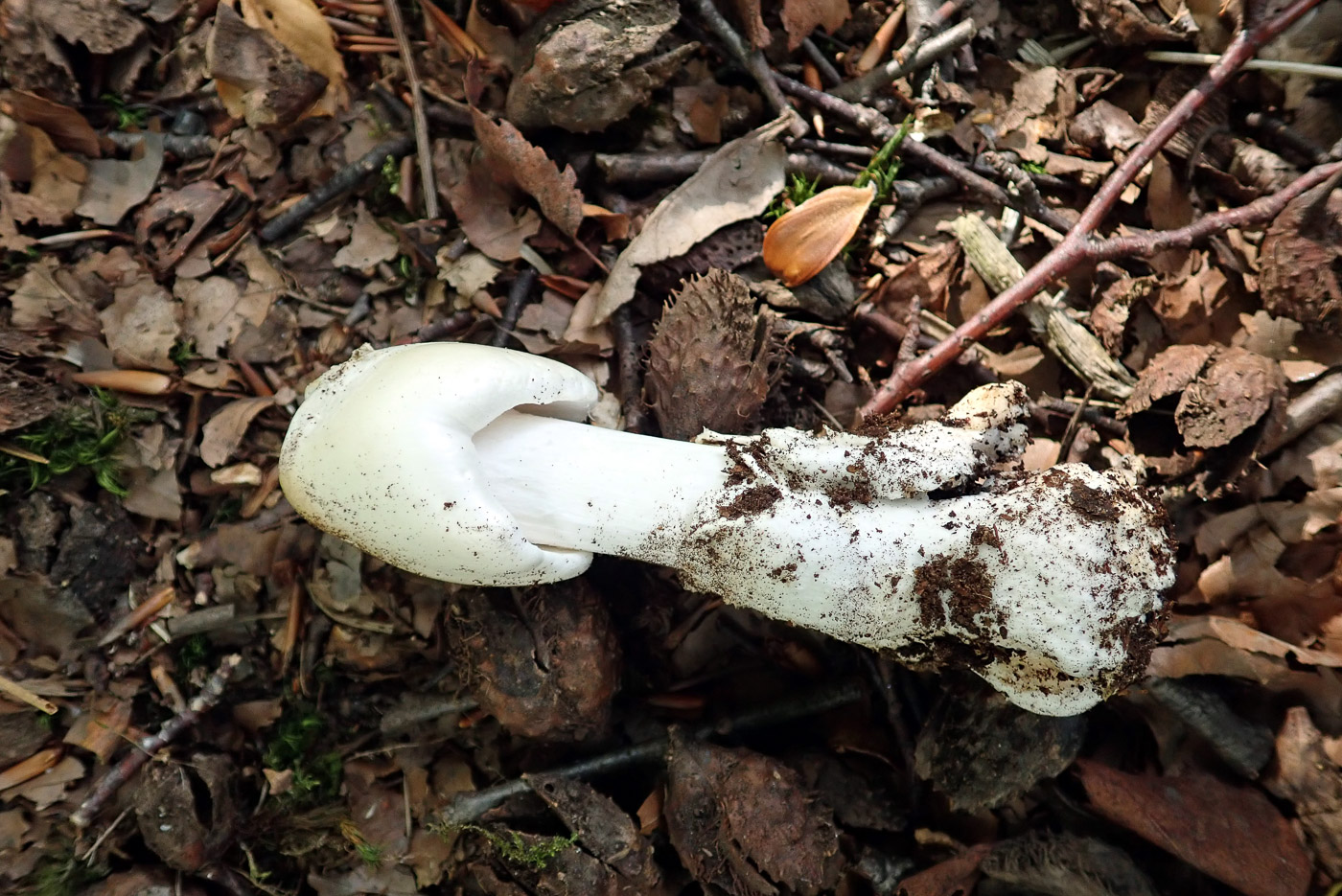
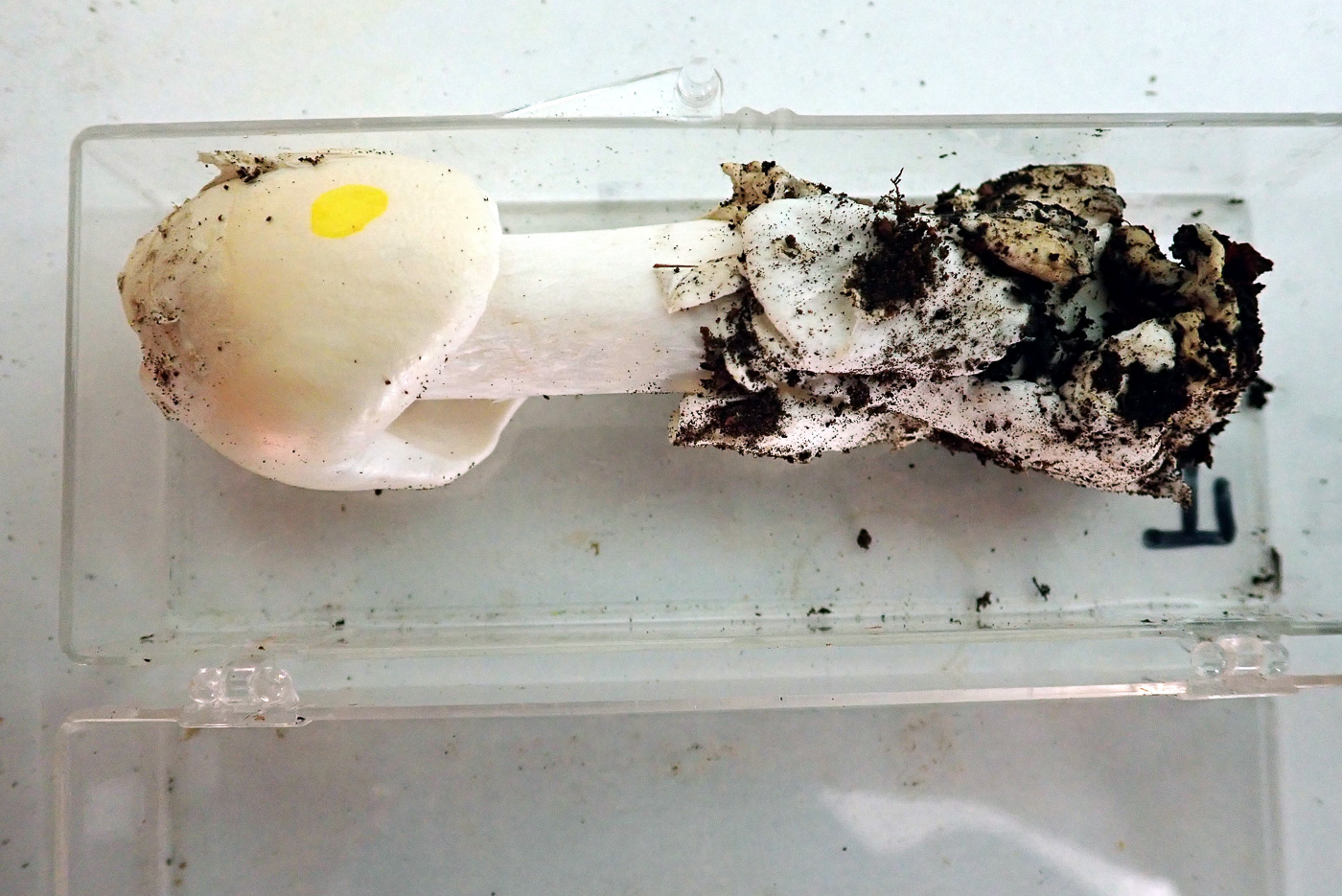 |
September 18th Amanita virosa (Destroying Angel)
This distinctly northern species is known from extremely few sites in S. England, and was found today, new to the county, at Hodgemoor Wood by Paul Cullington under Beech (photos Penny Cullington) - the find of the season so far for Penny. This Amanita has a pure white cap which is smooth, silky and sticky (unusual for the genus), a stem with a large white ring (not yet visible here) and a large white floppy fragile volva (much in evidence here). This immature singleton had no gills visible and on close inspection they were covered by the ring which still adhered to the cap and had not yet dropped to the stem. The definitive test to confirm the identity of this rarity (quite frequently claimed but practically always in error for A. citrina, particularly the completely white form of that species) is to place a drop of the chemical reagent KOH on the cap which uniquely turns instantly bright yellow (see second photo for the proof!). (See also A. citrina for comparison, dated today.)
THIS SPECIES IS DEADLY POISONOUS
|
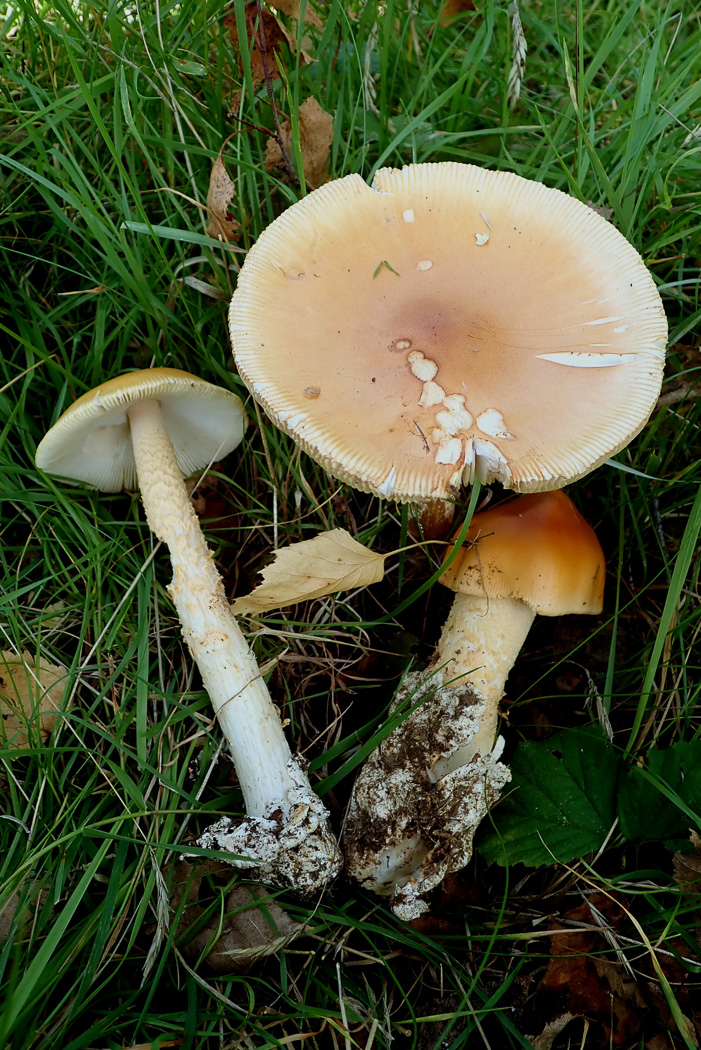 |
September 18th Amanita crocea (Orange Grisette)
It's always a delight to find this beautiful species which was today growing under Birch at Hodgemoor Wood found by Penny Cullington. Similar in shape to a large Amanita fulva, this Amanita has a cap of saffron-orange, darker at the centre and finely striate at the edge where paler, cream gills and a graceful stem lacking a ring but with faint saffron flocks and a large white floppy loose volva, easily damaged on collection. It is host specific with Birch though apparently occasionally found under Beech.
|
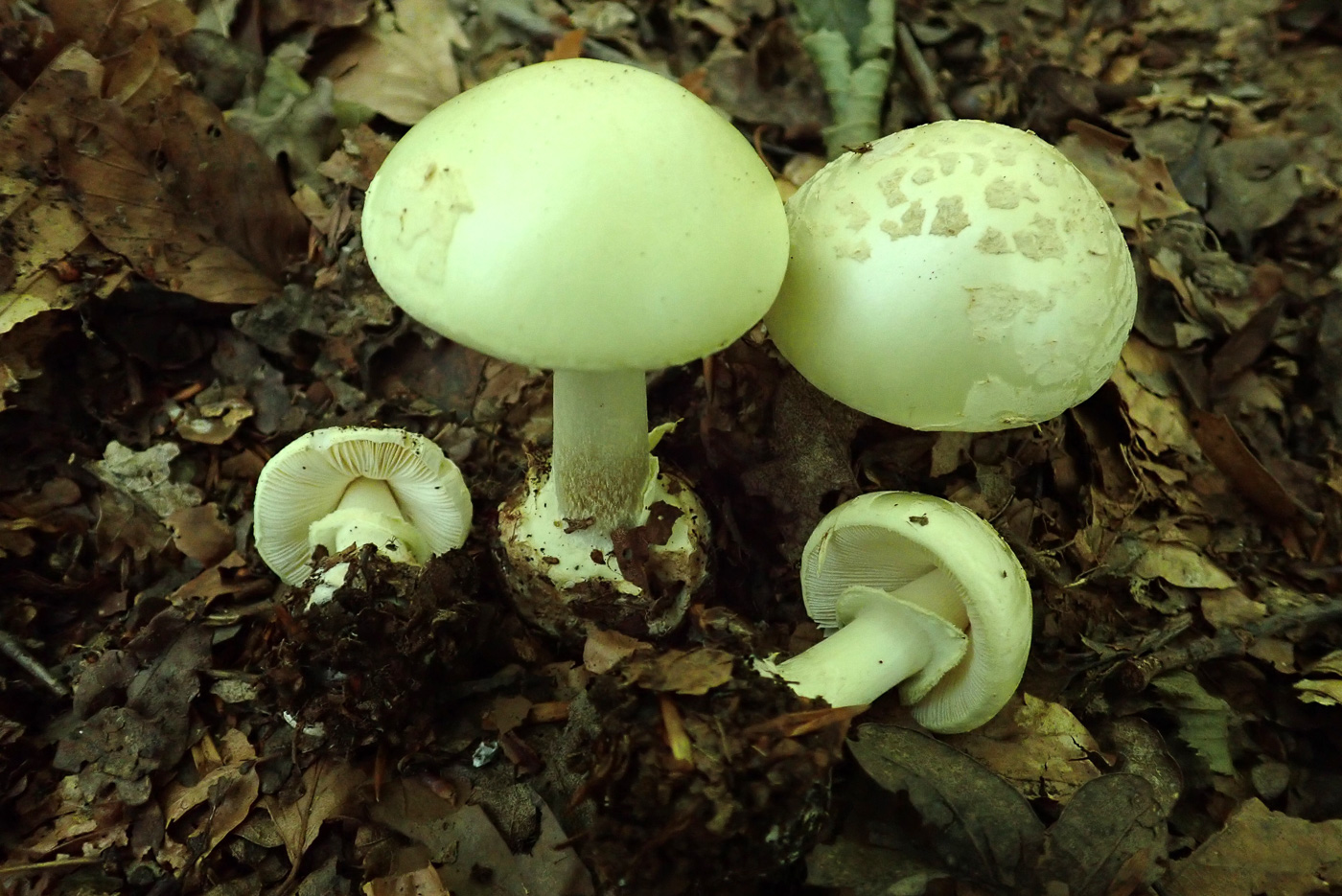 |
September 18th Amanita citrina (False Deathcap)
One of our commonest Amanitas, this has been in evidence in several woods recently but usually somewhat shrivelled in the heat. At Hodgemoor Wood Penny Cullington found some reasonably fresh fruit bodies growing under Beech. Note the lemon yellow caps with hint of green typically having flecks of veil which rub off easily, the white gills and stem with a skirtlike ring and prominent bulblike volva at the base. The acidic and striking smell of potato peelings of this species is particularly significant because it serves to separate the species from the two deadly species with which it can at times appear very similar. Note here the largest LH cap which has greenish tones and no veil flecks, appearing extremely reminiscent of the Deathcap (very common at the moment). However, that species has a sweet sickly honey-like smell, also a volva with a clear gutter (see photo dated 13th). The Destroying Angel (equally deadly but extremely rare in the south) has a similar smell to Deathcap (but see more on this species, dated today!)
|
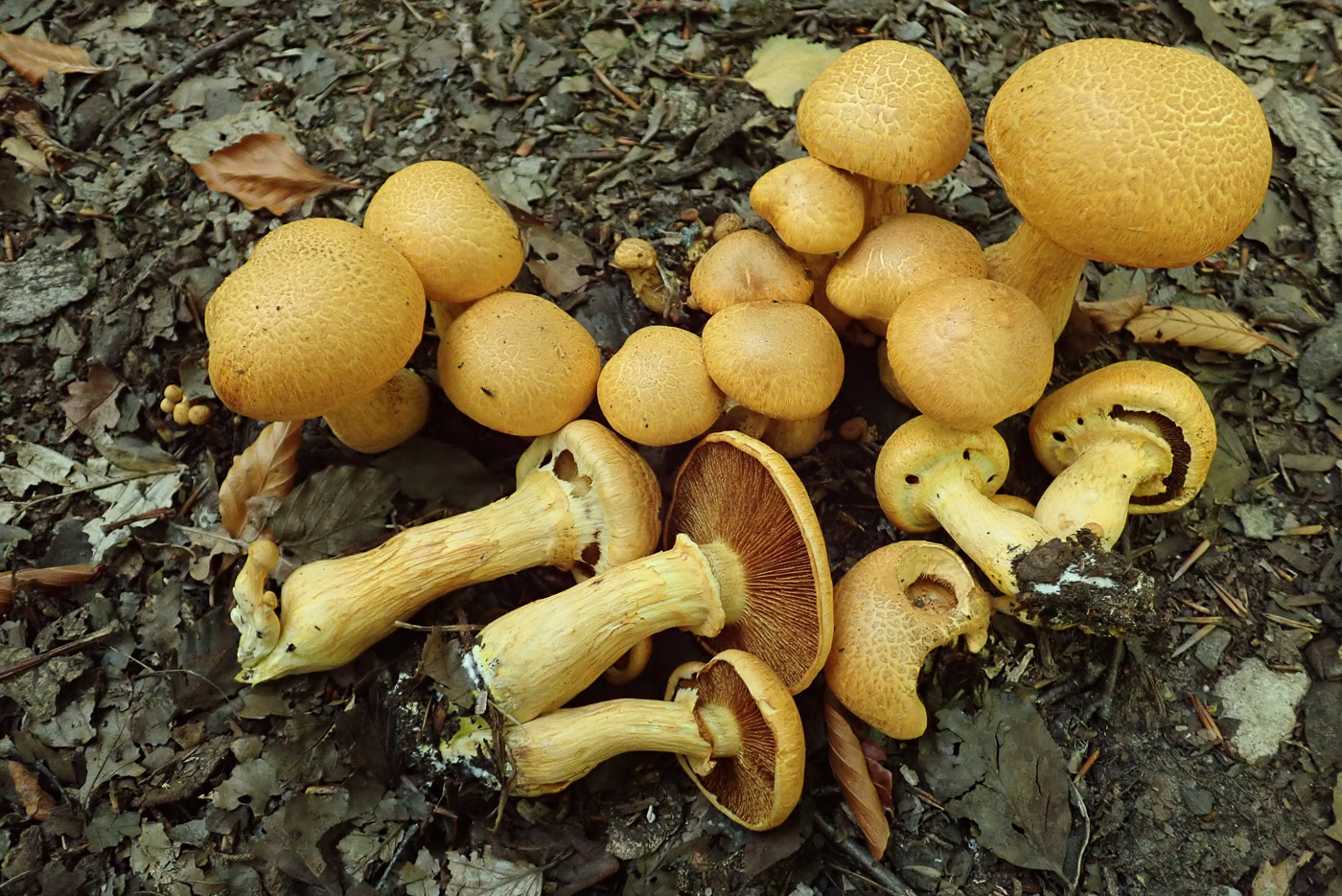 |
September 18th Gymnopilus junonius (Spectacular Rustgill)
Paul Cullington found this beautiful fresh young cluster growing on submerged roots of Beech in Hodgemoor Wood (photo Penny Cullington). The largest cap here was about 4cm across but when fully expanded the cap can get to 15cm or more. Note the rusty gills and very distinctive ring on the stem, also the lack of really distinct scales on the cap which if present would point to the similar genus Pholiota, often large and fruiting in clusters at the base of trees. This species occurs on dead wood or roots of deciduous trees.
|
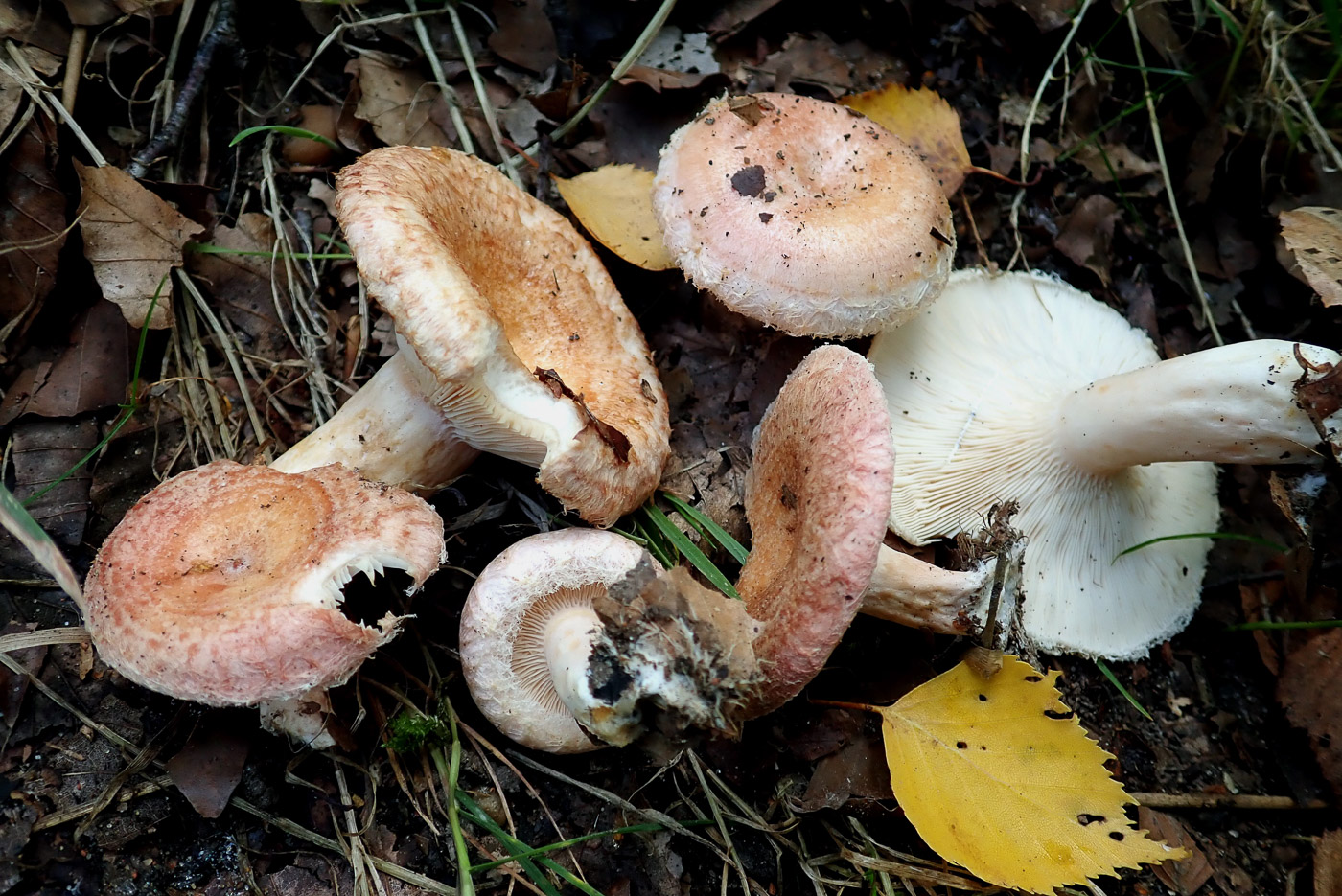
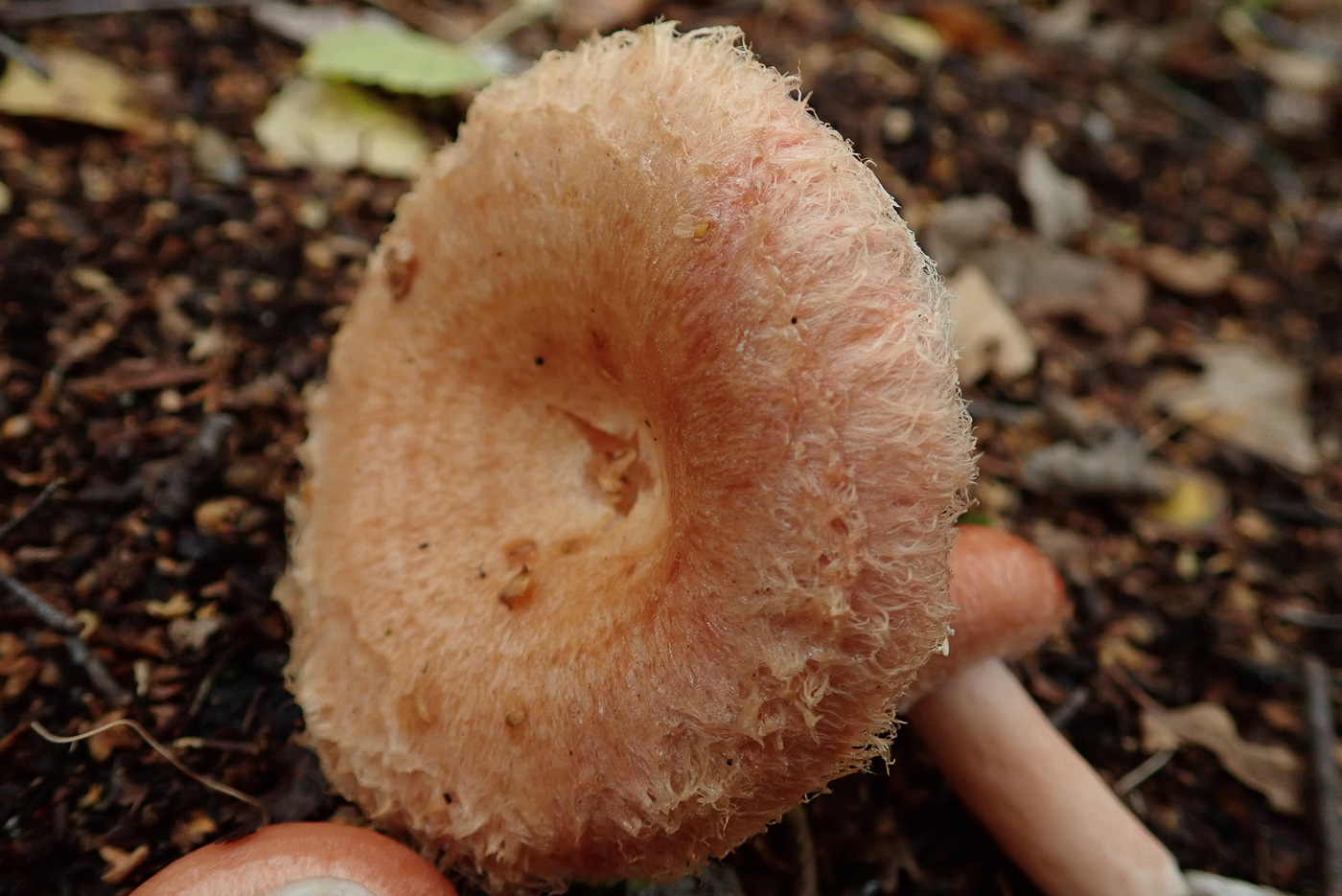 |
September 18th Lactarius torminosus (Woolly Milkcap)
Penny Cullington found this attractive species in Hodgemoor Wood under Birch with which it is host specific. Once you've realised this is a Milkcap (by damaging the gills and watching for the milk) this is an easy Milkcap to identify with several distinguishing features: Firstly the host tree, then the pink zoned cap with rather rough surface, then if a young specimen is available note the tightly inrolled and hairy cap margin when viewed from underneath. All these features are visible here except for the milk on the gills! This can happen when conditions are just too dry. There is a similar Milkcap with nearly all the same features (also host specific with Birch) to be aware of: L. pubescens. This, however, is very pale pink with less zoning apparent.
|
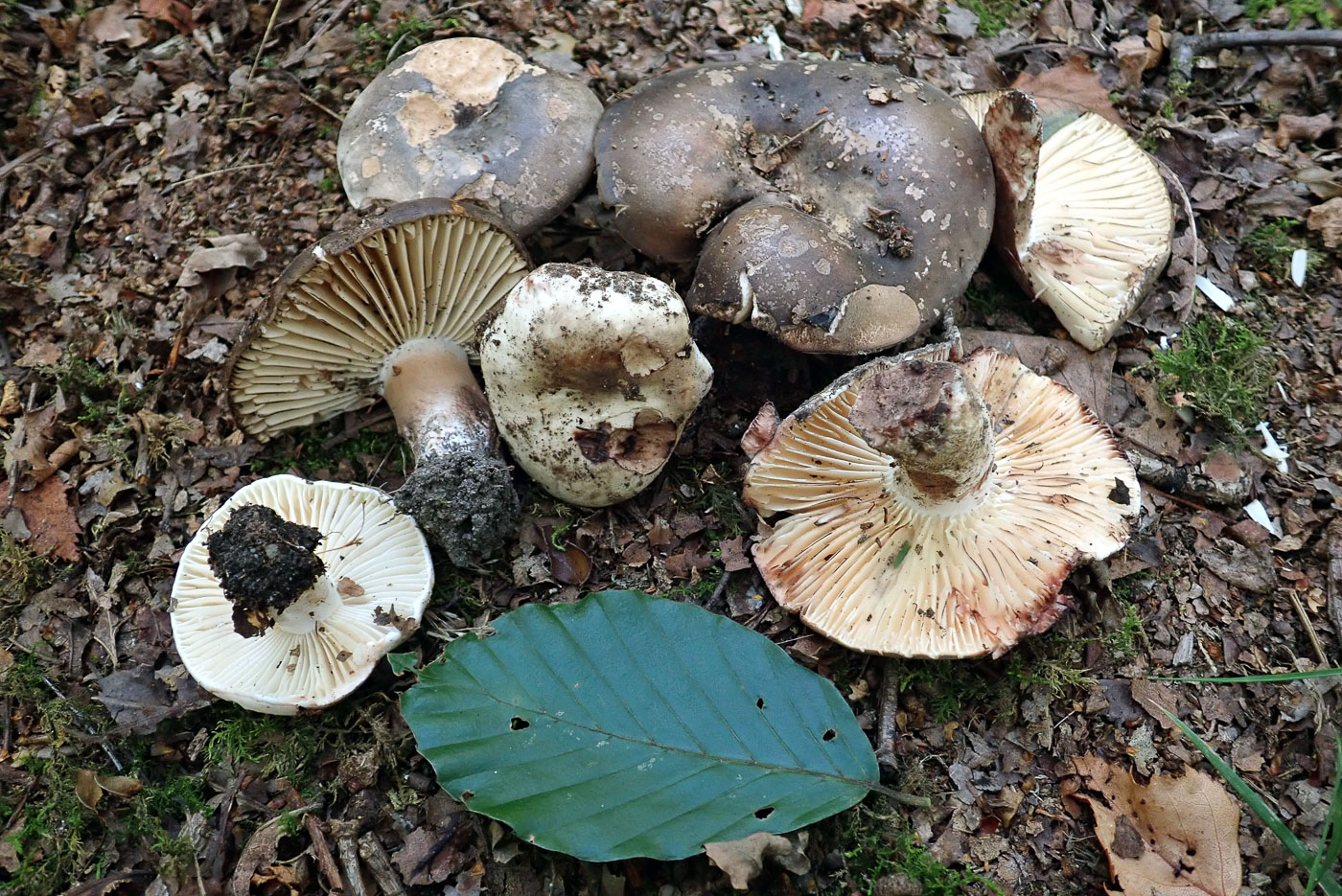 |
September 18th Russula nigricans (Blackening Brittlegill)
A common Brittlegill usually but not exclusively under deciduous trees, this collection was found by Penny Cullington at Hodgemoor Wood under Beech, its commonest host. This is a large and solid Brittlegill, getting to 15cm across or more. It starts out with a whitish cap but soon darkens, eventually ending up entirely black (hence the common name). It has the widest spaced gills in the genus - a key feature especially as there are several others which look superficially similar from above but have crowded gills. If you collect one, break it open, retaining it for 15 to 30 minutes, and watch the damaged flesh turn first red and then gradually black.
|
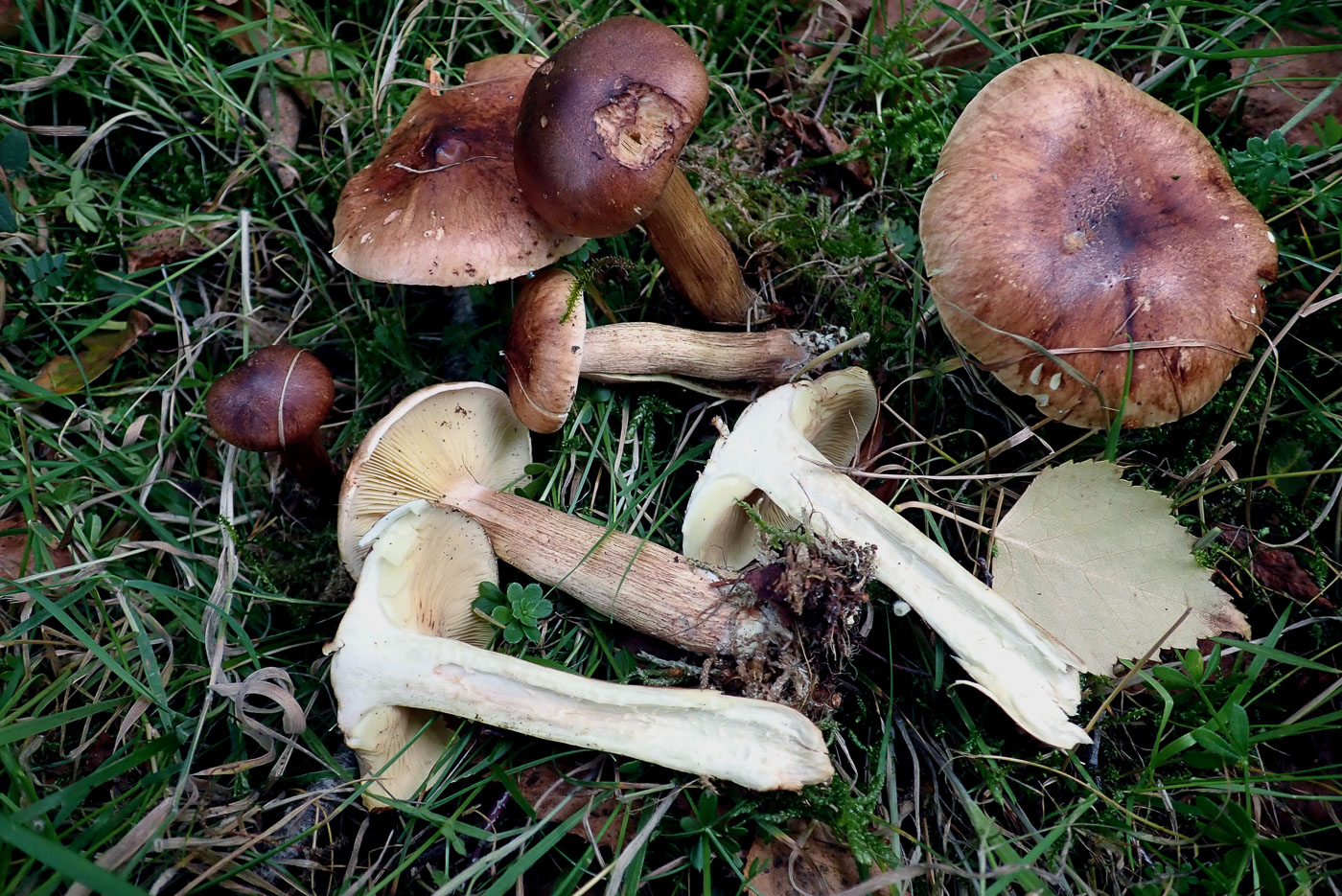 |
September 18th Tricholoma fulvum (Birch Knight)
Our first Knight of the season, this was found by Penny Cullington at Hodgemoor Wood under Birch with which it is host specific. Features to note as well as the host tree nearby: the fulvous brown smooth cap, pale yellow gills and a brownish stem which if broken open reveals pale yellow flesh and becomes hollow as it matures. It is quite common wherever Birch occurs.
|
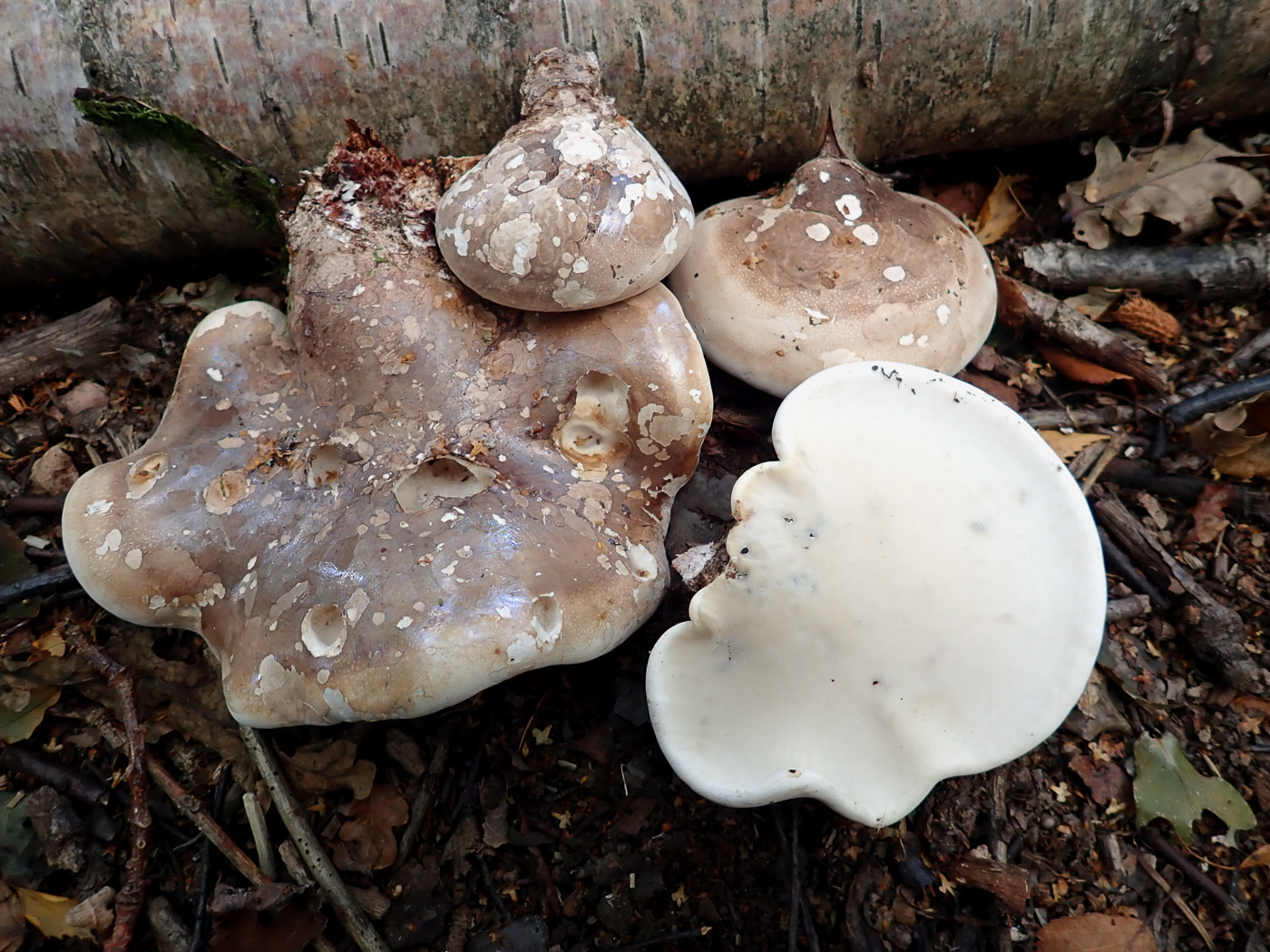 |
September 18th Fomitopsis betulina (Birch Bracket)
A very common bracket wherever there are Birches, with which it is host specific, this was found by Penny Cullington on a fallen Birch log in Hodgemoor Wood. Much more familiar by its older name of Piptoporus betulinus, it has tiny white pores underneath and grows on both fallen and living trunks and branches and is one of the easiest fungi to recognise.
|
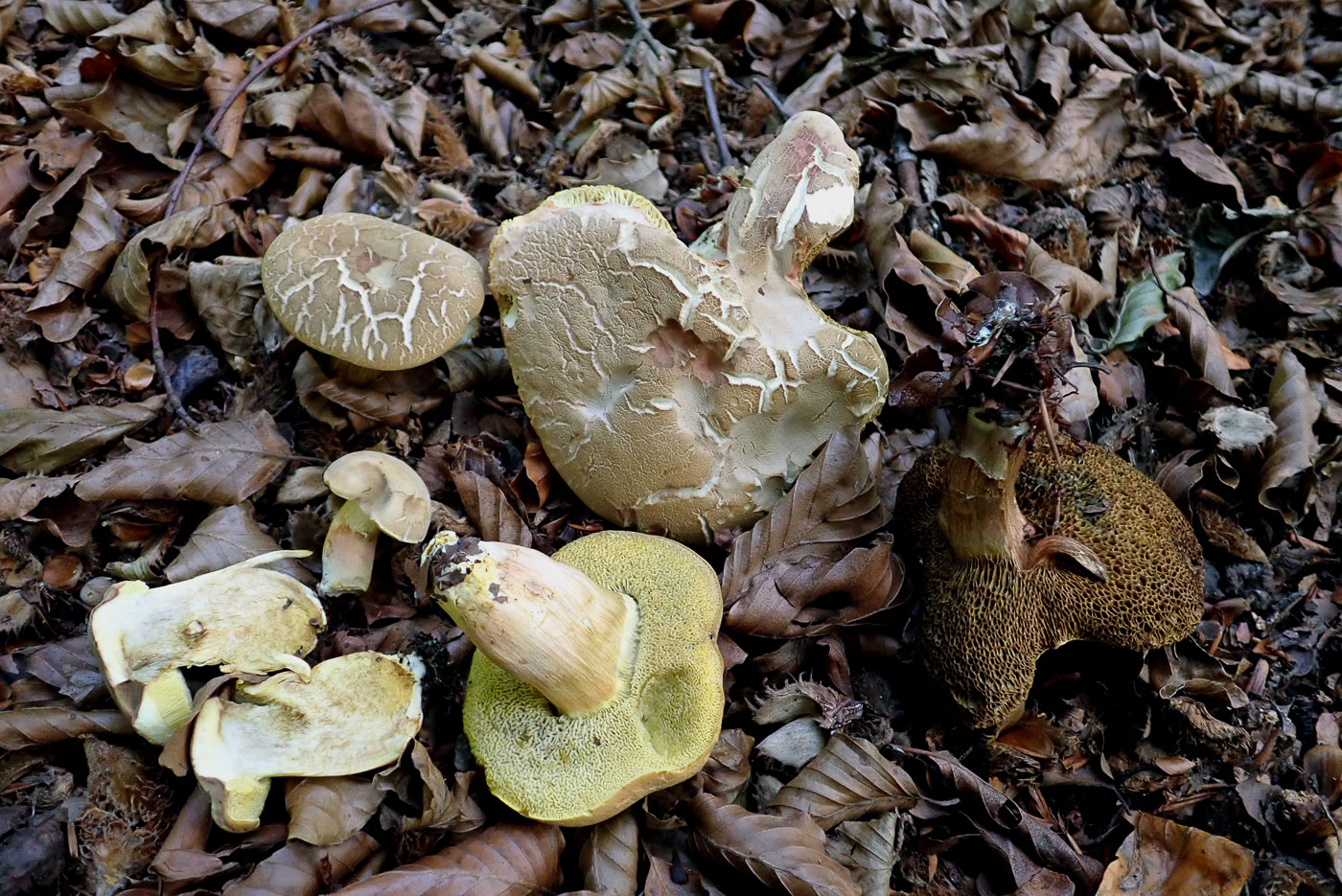
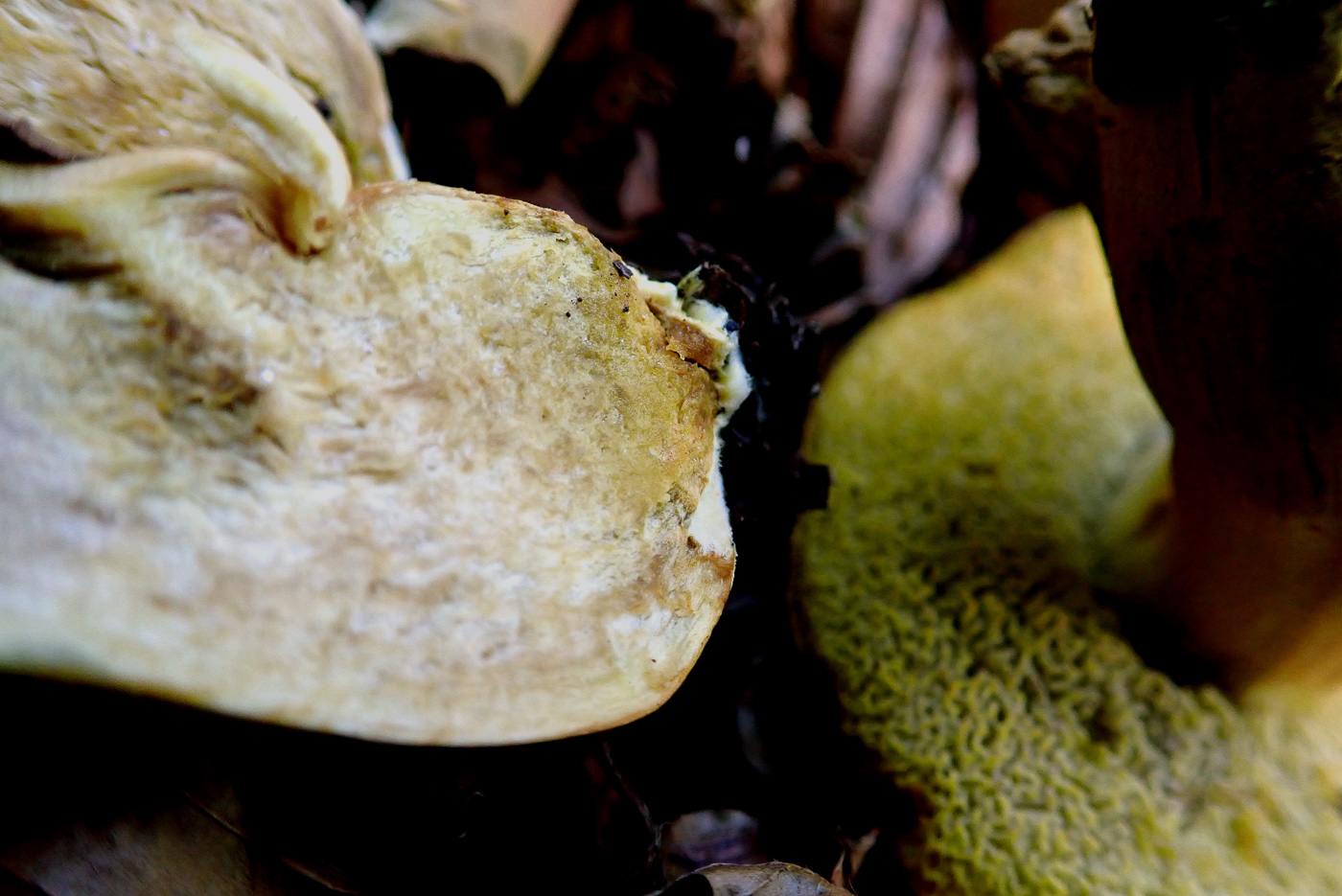 |
September 18th Hortiboletus engelii (No common name
Penny Cullington found this collection under Oak at Hodgemoor Wood. Previously known as Boletus (also Xerocomus) communis, it is closely related and extremely similar to a range of tricky boletes which many mycologists now shy away from naming to species. The name Red Cracked Bolete of old is not necessarily Xerocomellus chrysenteron as many think: several other species can develop a similar cracked cap, including today's species. Furthermore, blueing pores and flesh are helpful pointers but in themselves are not sufficient to ascertain the species. H. engelii, despite having no common name, is a common species under Oak, the cap is often flat and café-au-lait in colour. If sliced lengthways the stem base shows varying degrees of orange as dots or patches - a feature which helps to separate it from others. Penny felt sufficiently happy about this particular determination but, as many of you know, she regularly declines to commit to a specific name with this group of mushrooms
|
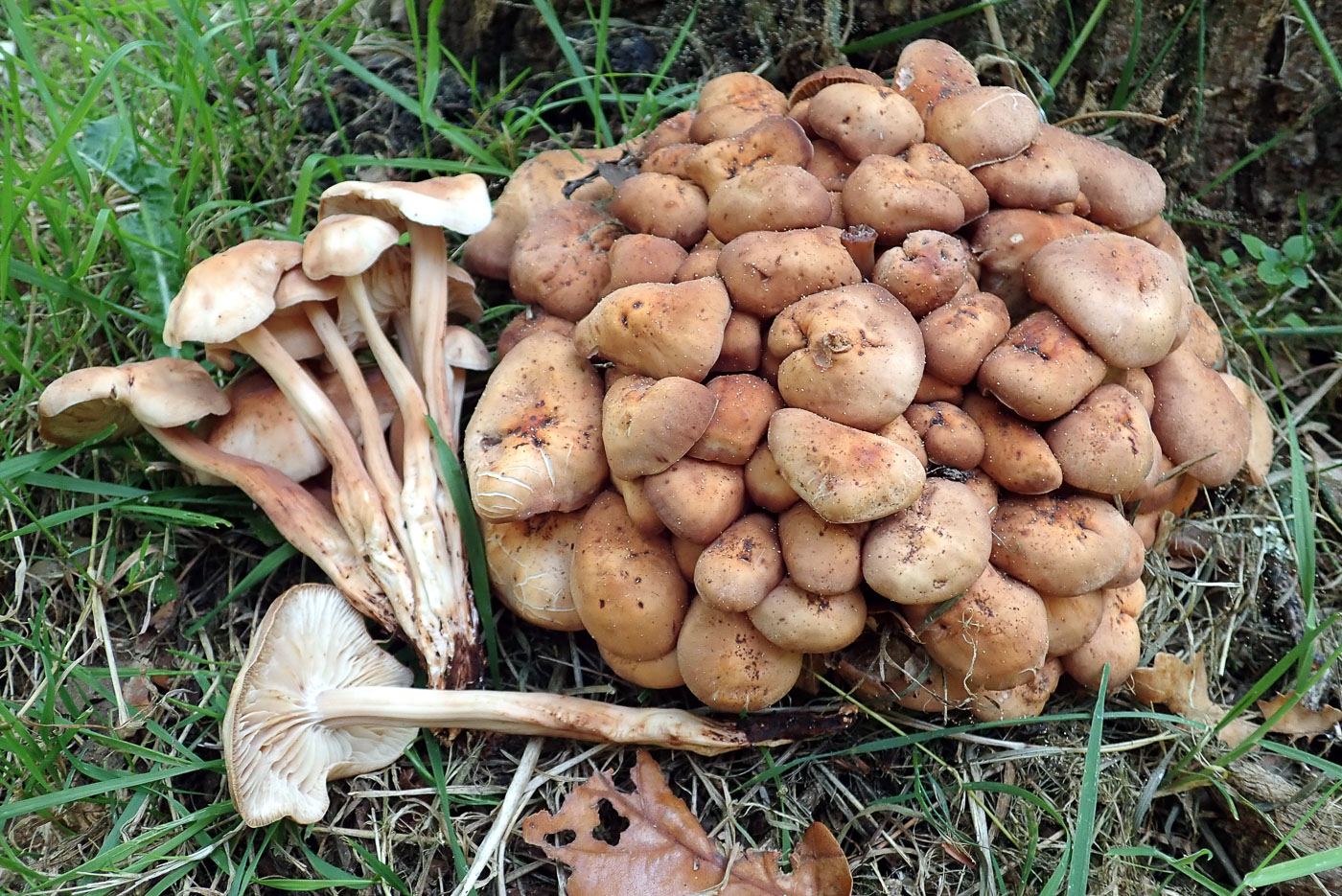 |
September 18th Gymnopus fusipes (Spindle Toughshank)
Better known as Collybia fusipes, this was fruiting in abundance at the base of Oaks in Hodgemoor Wood and found by Penny Cullington. It's not uncommon in mature woodlands and also occurs under Beech. The species name translated is a useful character, ie the stem bases tend to fuse together (as seen on the left here) and this character together with the fulvous brown caps and tightly clustered habit are the main clues to its identity.
|
September 17th 2020
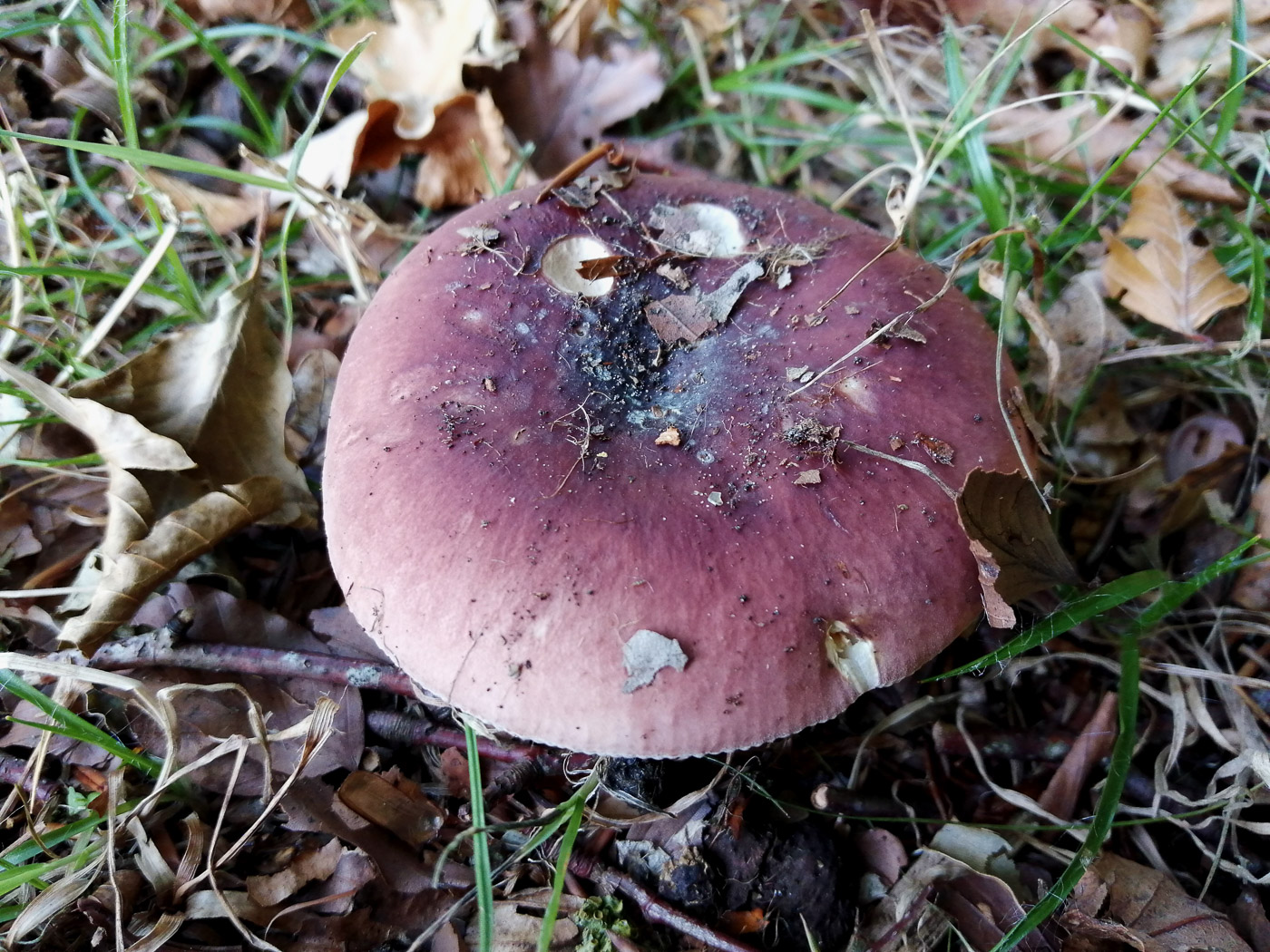
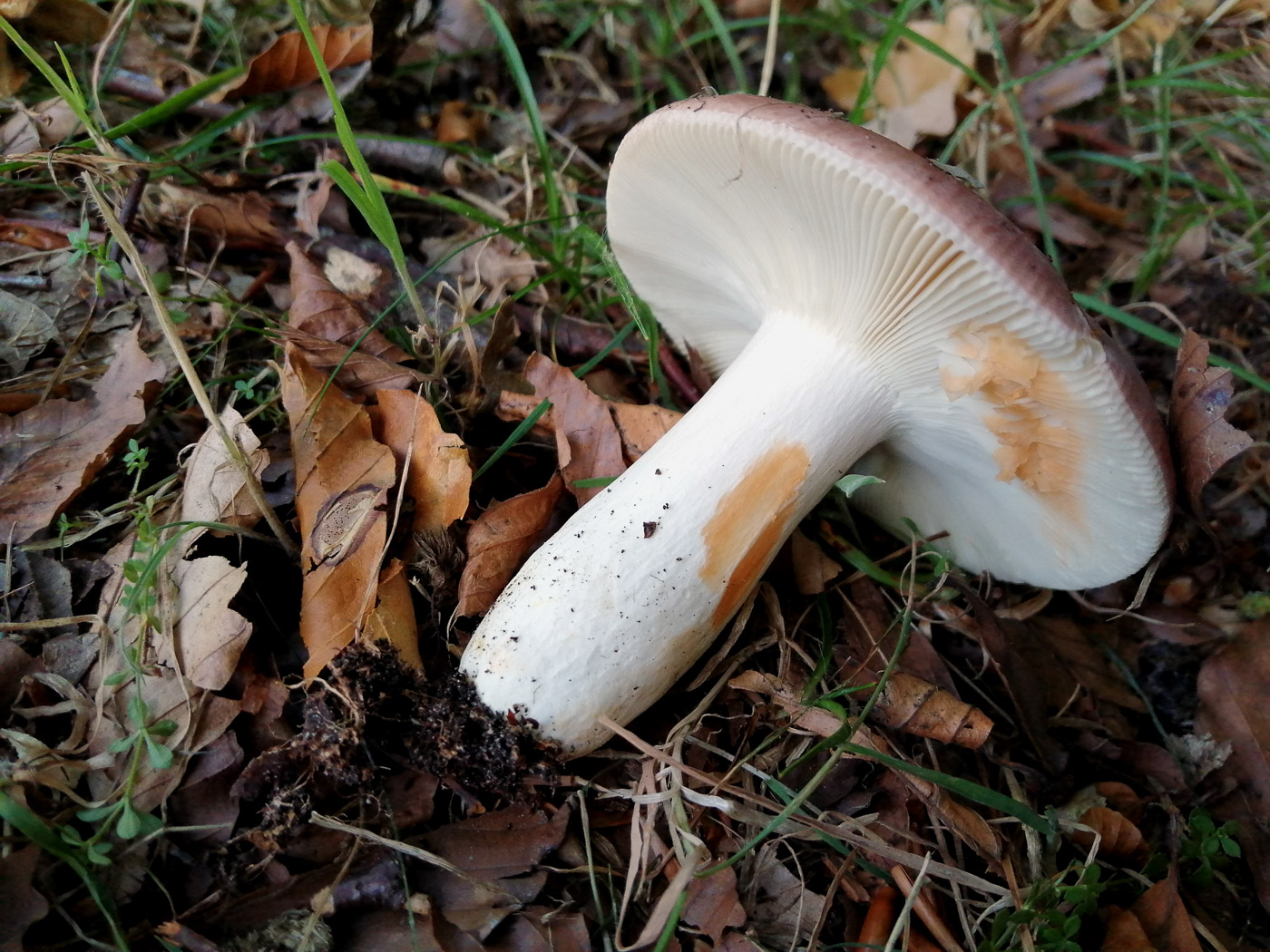
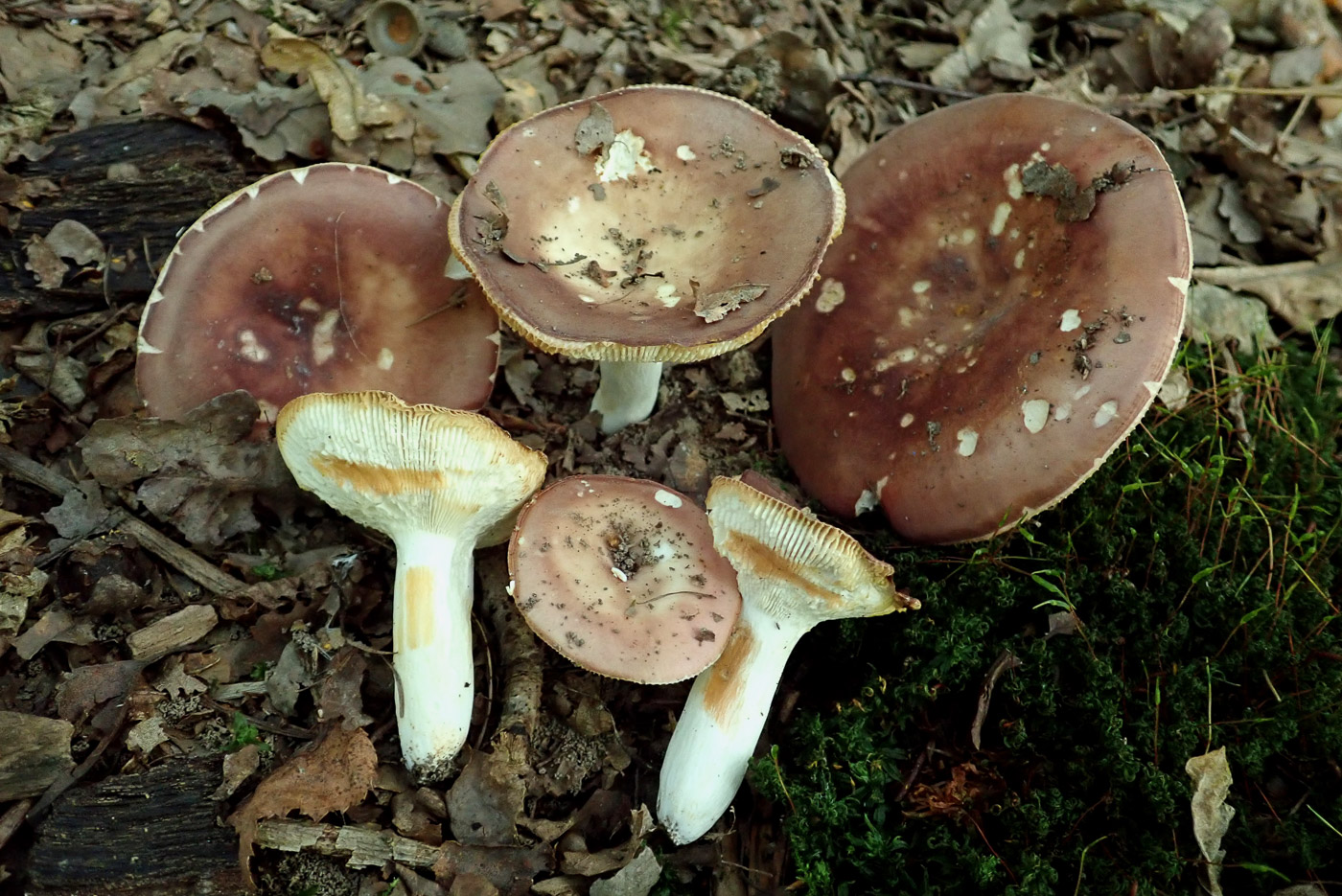 |
September 17th Russula vesca (The Flirt)
Penny Cullington found this surprisingly fresh singleton under Oak at Cadmore End. Yet another red capped Brittlegill, this one is described as the colour of smoked gammon though the caps can sometimes be much paler than this particular singleton specimen. (See third photo of a collection found two days later in Penn Wood.) Another useful field clue to look for is the way the cap cuticle (coloured surface) starts to retract at the margin, increasingly with age, thus leaving a thin white rim where the gills show through - hence its imaginative common name suggesting a lady saucily showing her white petticoat! A more technical feature: a crystal of Ferrous Sulphate rubbed on both stem and gills quickly turns intensely smoked salmon pink (only one other species reacts like this but it has a green cap - R. heterophylla). Both the petticoat effect and the crystal reaction are visible in the second and third photos. (Remember: smoked gammon and smoked salmon!)
|
September 16th 2020
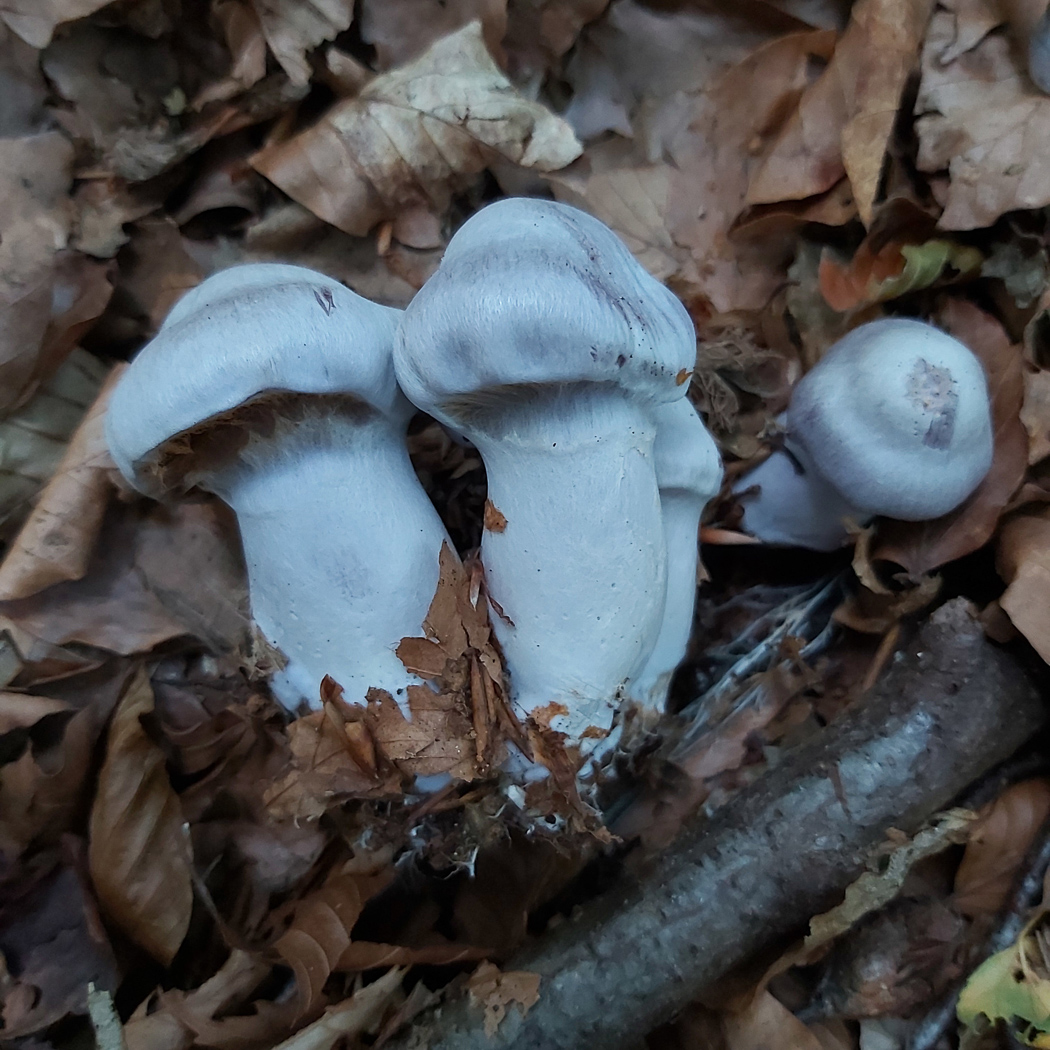 |
September 16th Cortinarius alboviolaceus (Pearly Webcap)
This young collection was just emerging under Beech at Hodgemoor Wood, found by Jesper Launder. This is one of the trickiest and largest genera with over 600 species known in the UK and many more still to be identified. Relatively few are nameable in the field but this is one, being evenly bluish white all over with a silky dry cap. Note the meshlike 'cortina' joining cap to stem in the middle specimen but just breaking away on the LH specimen to reveal the rusty gills and spores. If cut open this species has violaceous flesh throughout. It is uncommon and found in mixed deciduous woodland.
|
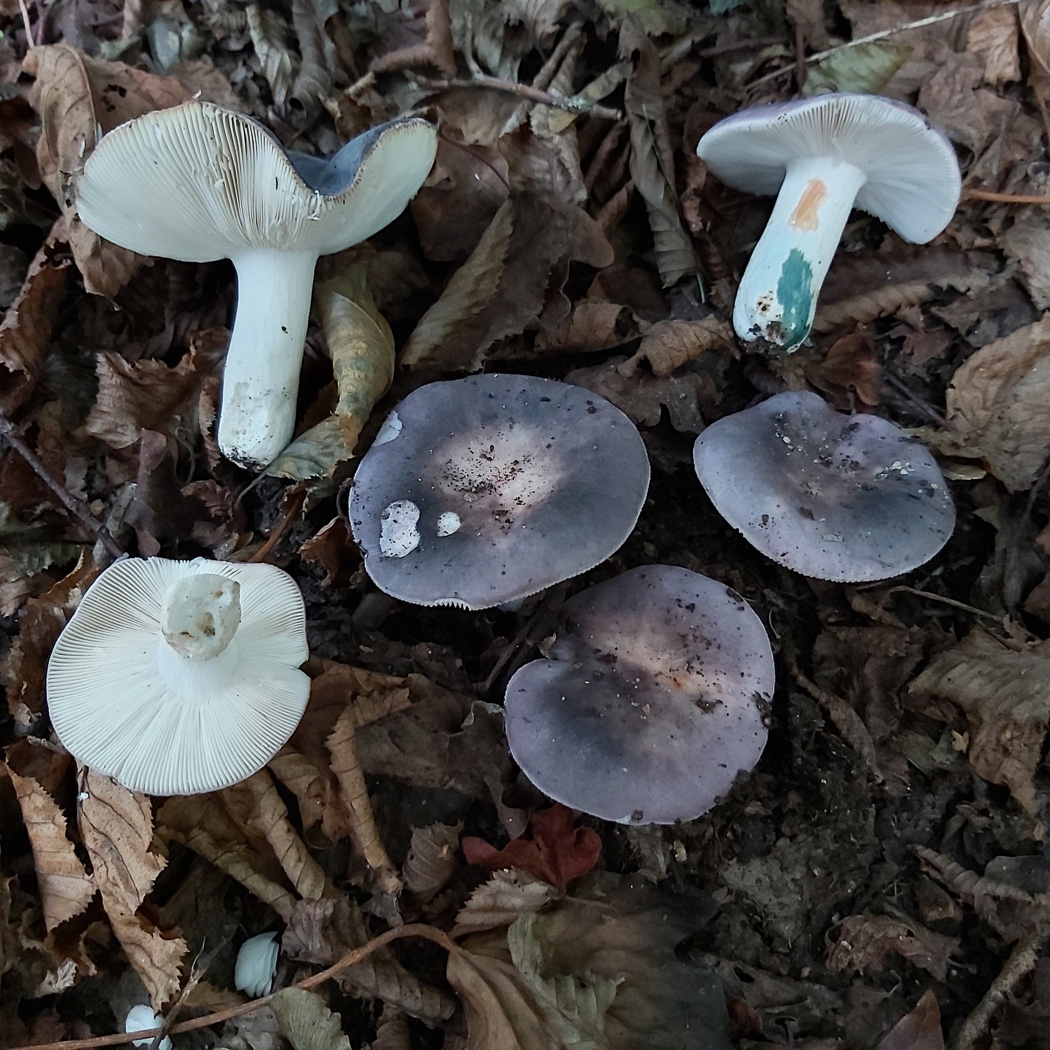 |
September 16th Russula grisea (No common name)
Jesper Launder found this beautiful collection in Jordans Village growing under Hornbeam. This species is one of several common Brittlegills which frequent deciduous woods and have caps a mix of pink, lilac and green tones together with pale cream gills and white stem. Consequently they are not easy to separate in the field with any certainty. Using chemical tools, as Jesper has on the top right specimen, is the best way: A crystal of Ferrous Sulphate rubbed on the stem in most Brittlegills turns varying degrees of rusty orange. (See also comments on R. vesca dated Sept 17th). R. grisea has the strongest almost pink reaction of the three species with similar cap colours (the fourth, R. cyanoxantha, reacts hardly at all and if so turns pale greyish green). The blue stain on the top right specimen has been caused by testing with a drop of Guaiac - another very positive reaction.
|
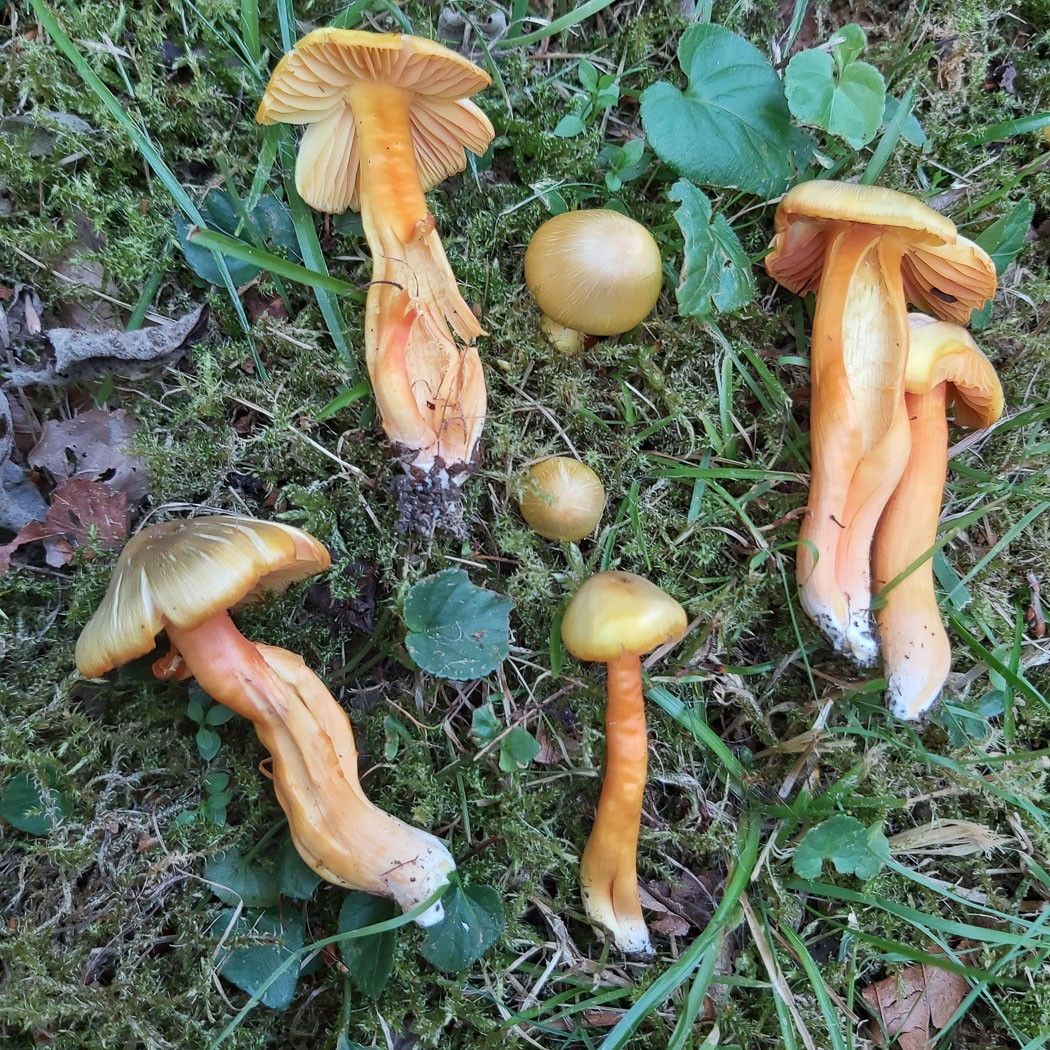 |
September 16th Hygrocybe quieta (Oily Waxcap)
This collection was found by Jesper Launder in a grassy patch in Hodgemoor Wood. A typical brightly coloured waxcap, this species is not always easy to separate from others. The yellowish caps combined with orange gills and stem are good characters, but the smell if detected is the clincher in the field and gives rise to the common name. If your bruise the flesh or cut it, it has a distinctive oily rubbery smell very similar to Lactarius quietus (Oak Bug Milkcap) - not helpful, of course, unless you are familiar with that species!
|
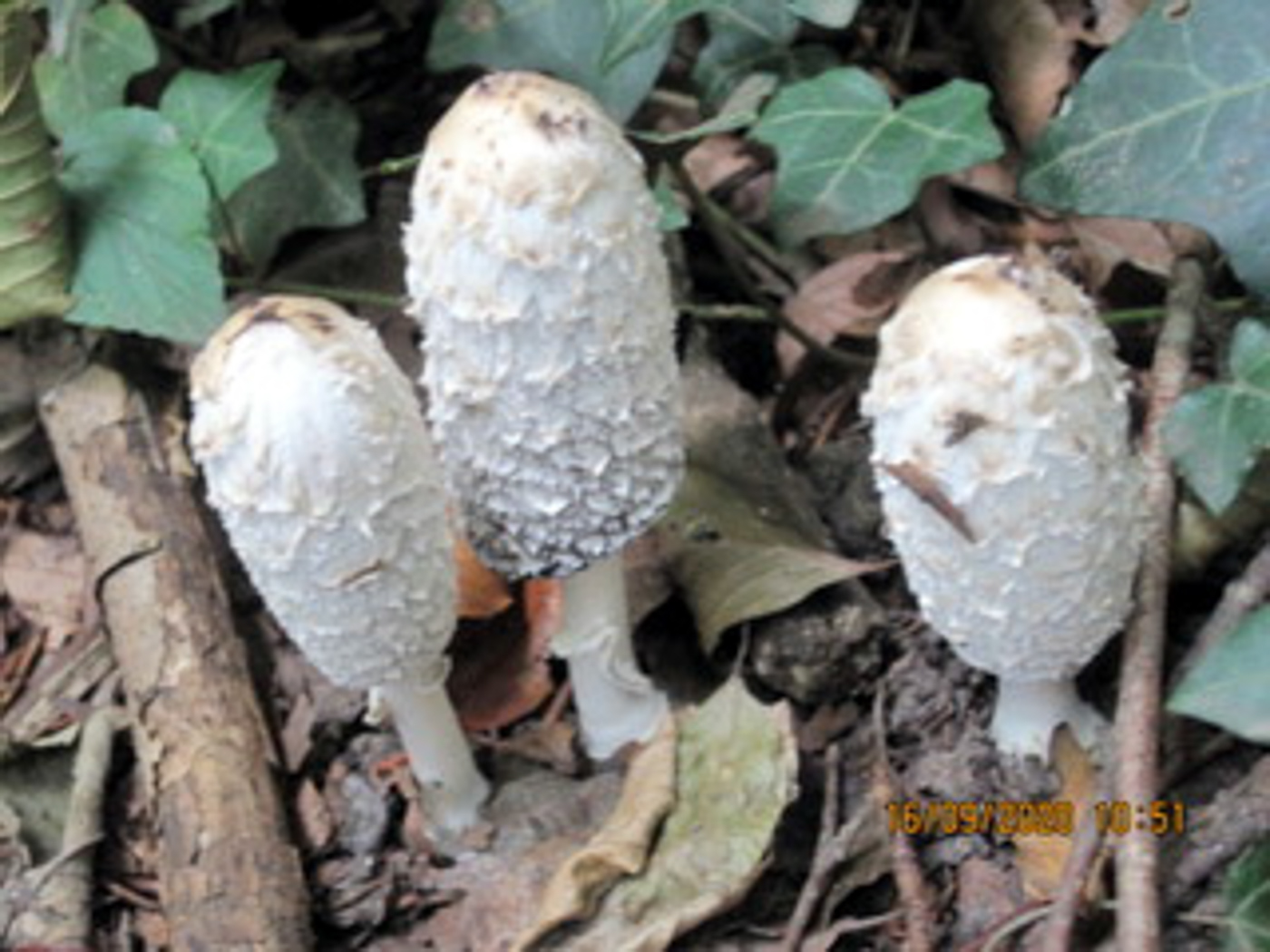 |
September 16th Coprinus comatus (Shaggy Inkcap / Lawyer's Wig)
Greg Douglas found this instantly recognisable Inkcap species growing in litter in Widmore Wood. The two apt common names describe it well though like many of the genus it quickly deteriorates and within 24 hours ends up as a black puddle!
|
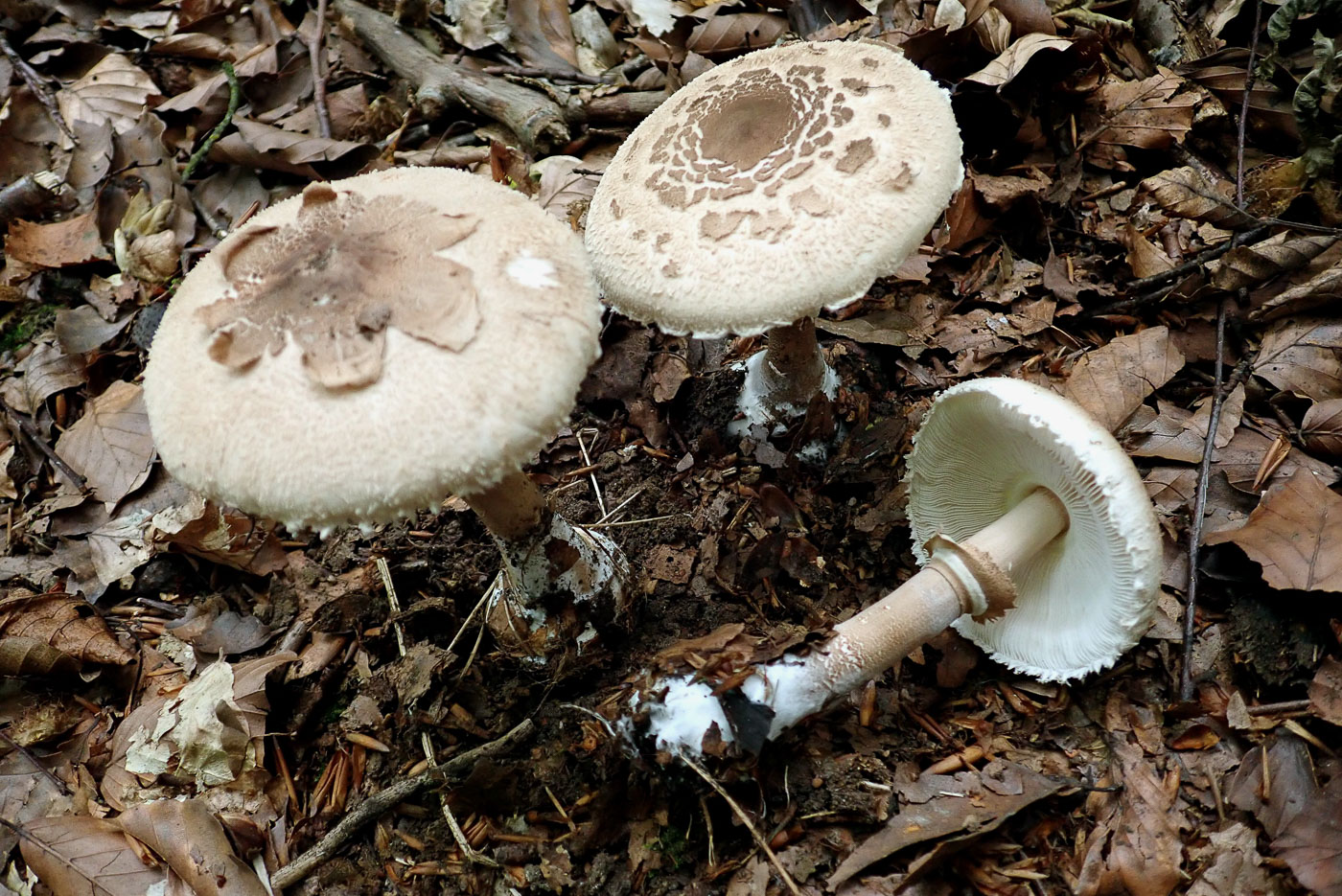
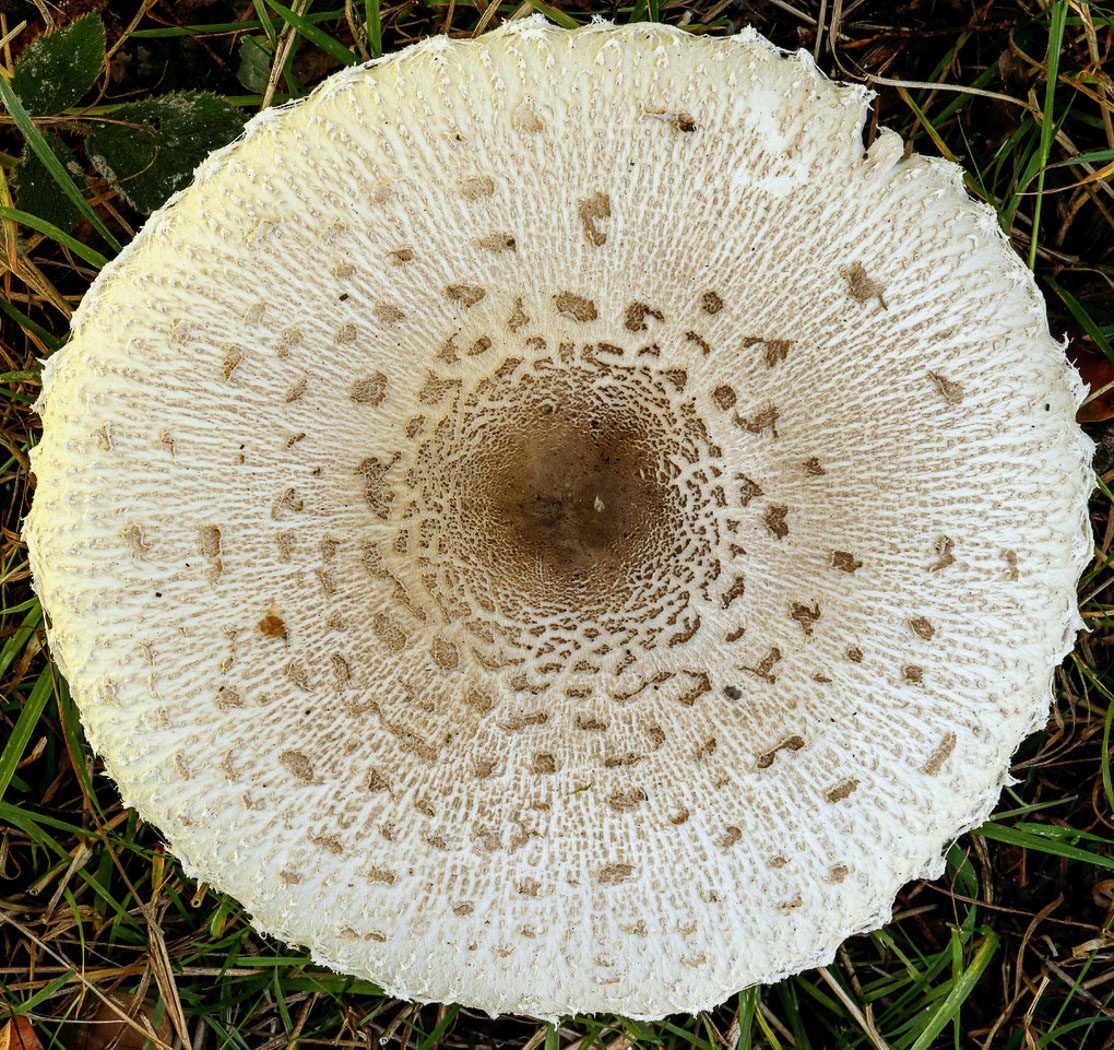 |
September 16th Macrolepiota konradii (No common name)
This nice collection was found in Penn Wood in grassy litter by Penny Cullington. Clearly similar to M. procera (Parasol) having the same snakeskin stem markings with mobile ring and swollen base, the cap has distinctly different markings. Note the smooth darker central zone which becomes torn with much paler barely scaly outer half. (The second photo shows another example, cap 17 cm across, found by Paul Goby in Naphill Common two days later.) However, compare with M. mastoidea (photo dated Sept 10th) and characterised by its prominent nipple-like central umbo - a feature not found in other species of this genus. Some authorities claim that M. konradii should be synonymised with M. mastoidea, but as M. konradii (as photoed here) appears to be almost the commonest of the genus in this area, Penny wishes to continue recording it under that name until definitely proven incorrect!
|
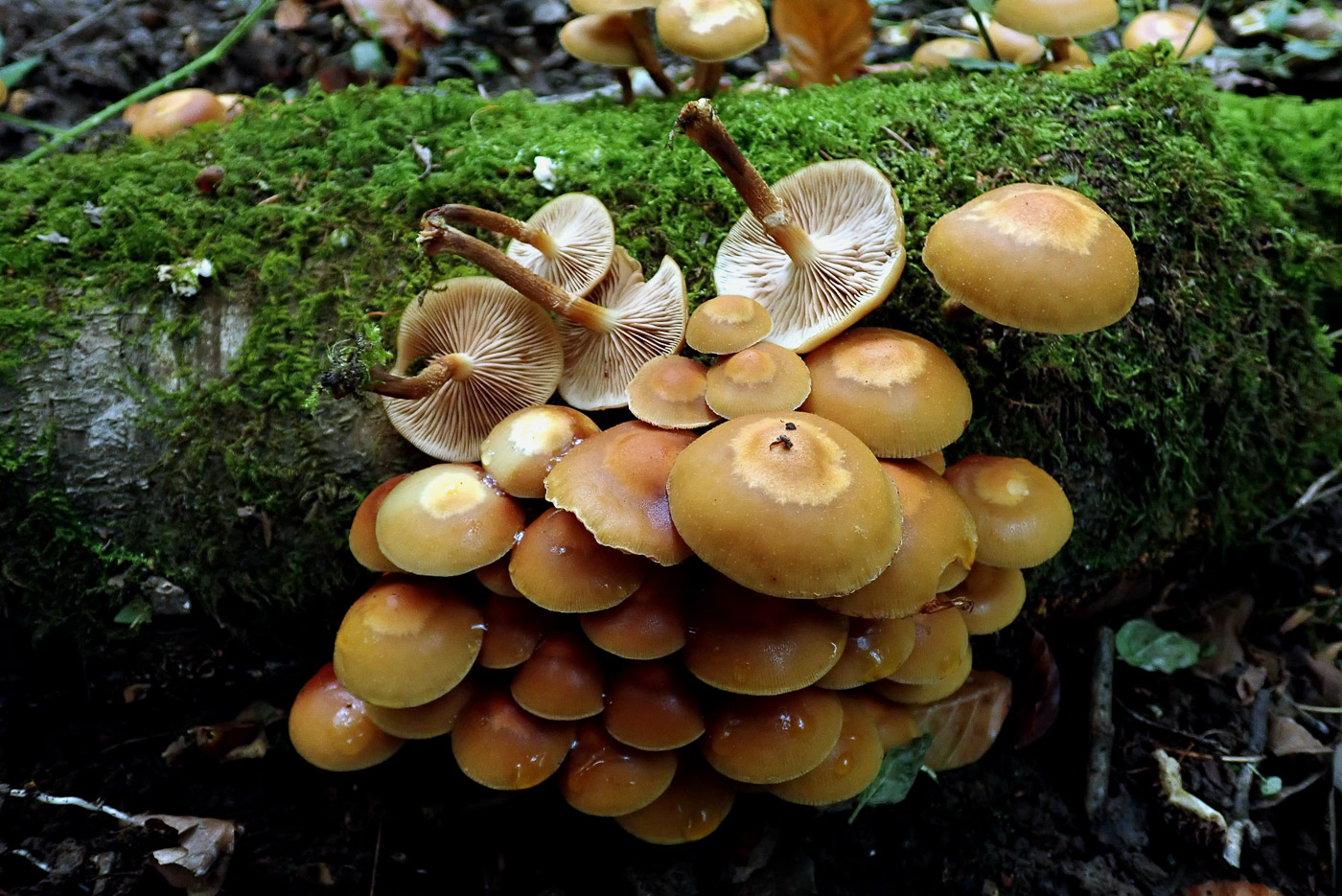
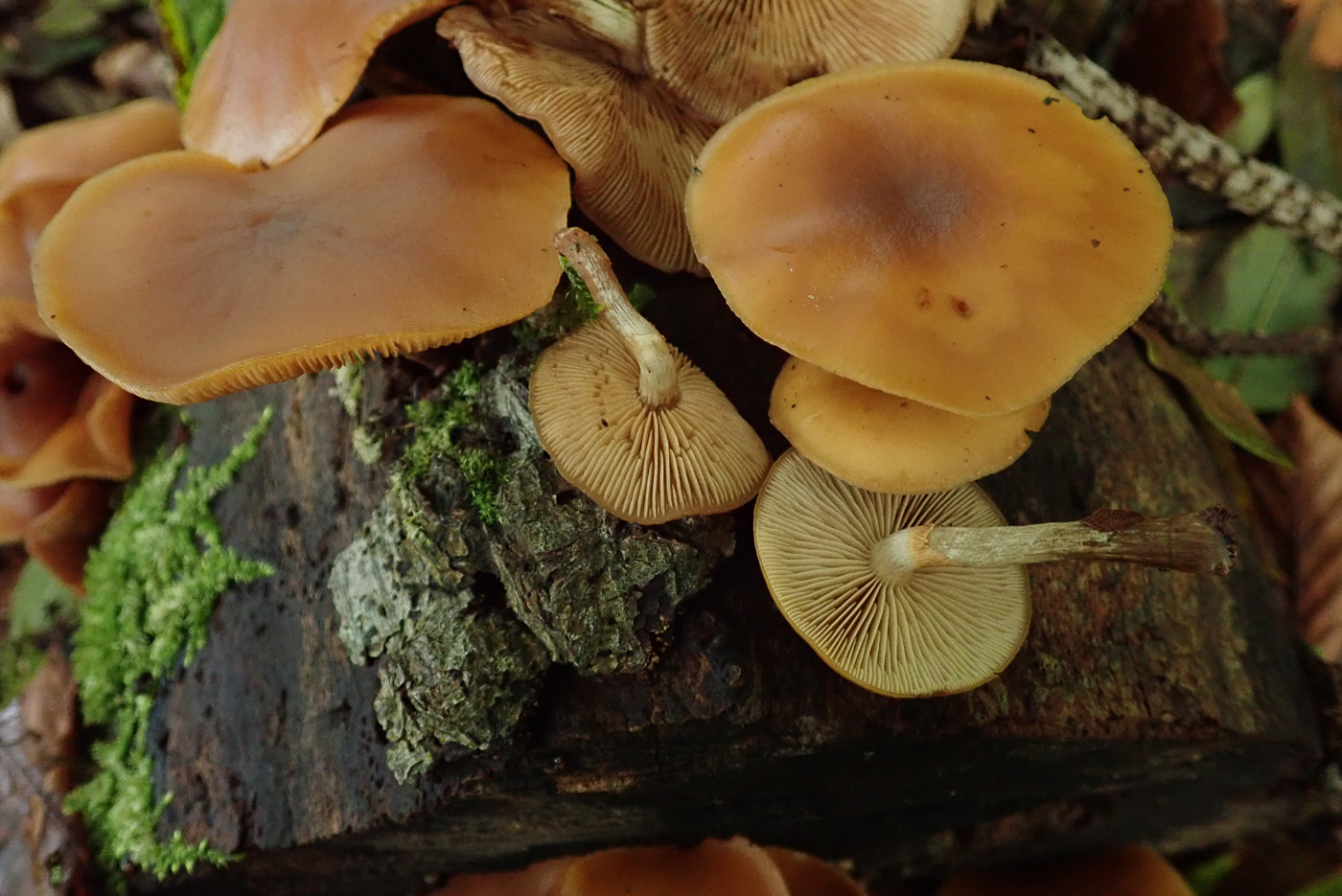
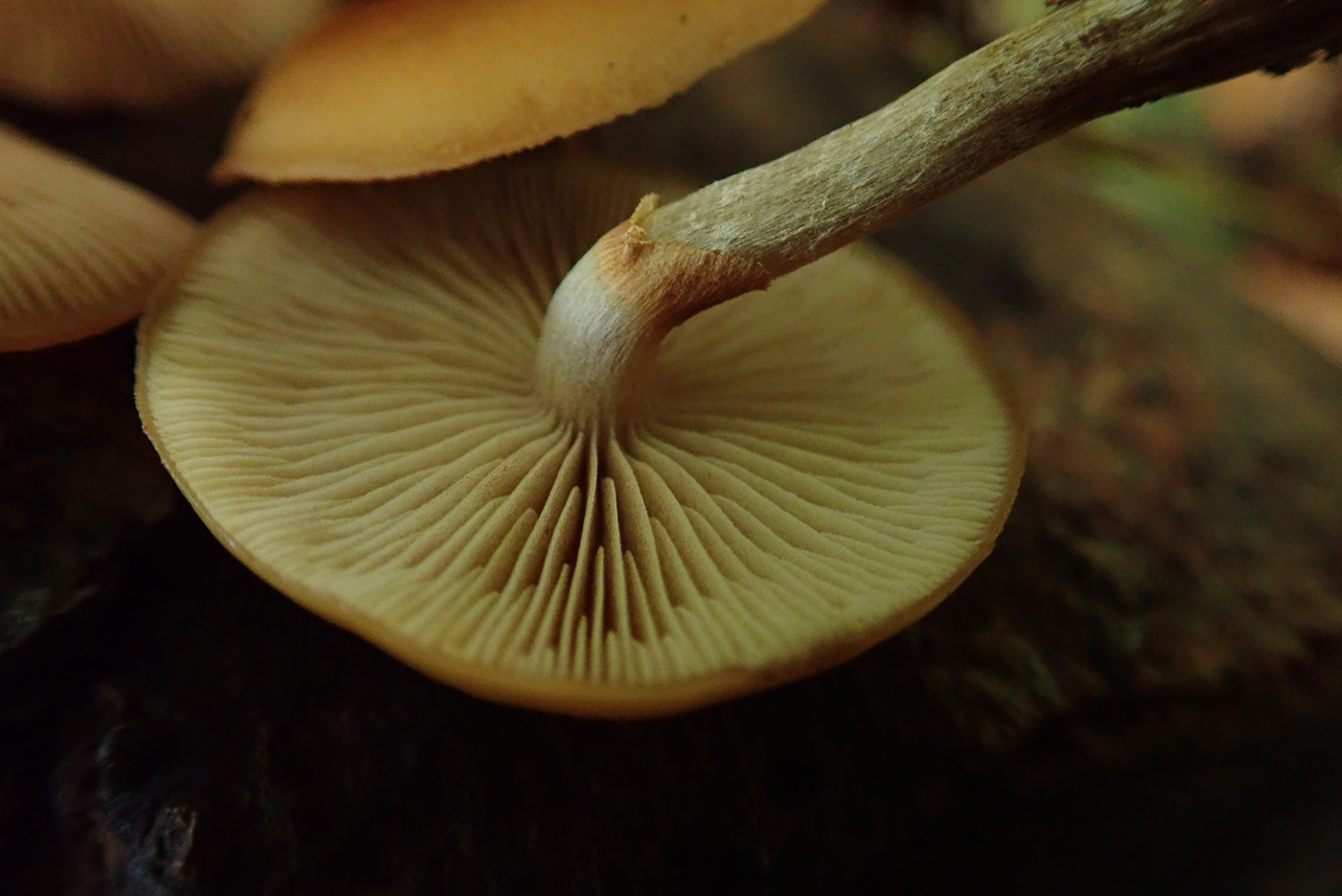 |
September 16th Kuehneromyces mutabilis (Sheathed Woodtuft / Two-tone Pholiota)
This typical dense cluster was found growing on fallen deciduous wood in Penn Wood by Penny Cullington. An attractive species, it quickly develops the two-tone effect with a paler central zone as it dries out - a key character. That together with the stem having a ring zone and the clustered habit on deciduous wood make it quite an easy species to recognise. (It is in fact close to the genus Galerina and not the genus Pholiota, hence its relatively new common name, though it seems a shame not to have retained the descriptive 'Two-tone' in the name.) Photo 2 and 3, taken exactly a month later at Pulpit Hill, show fruit bodies in damp conditions before the two-tone effect has developed, also detail of the ring zone on the stem.
|
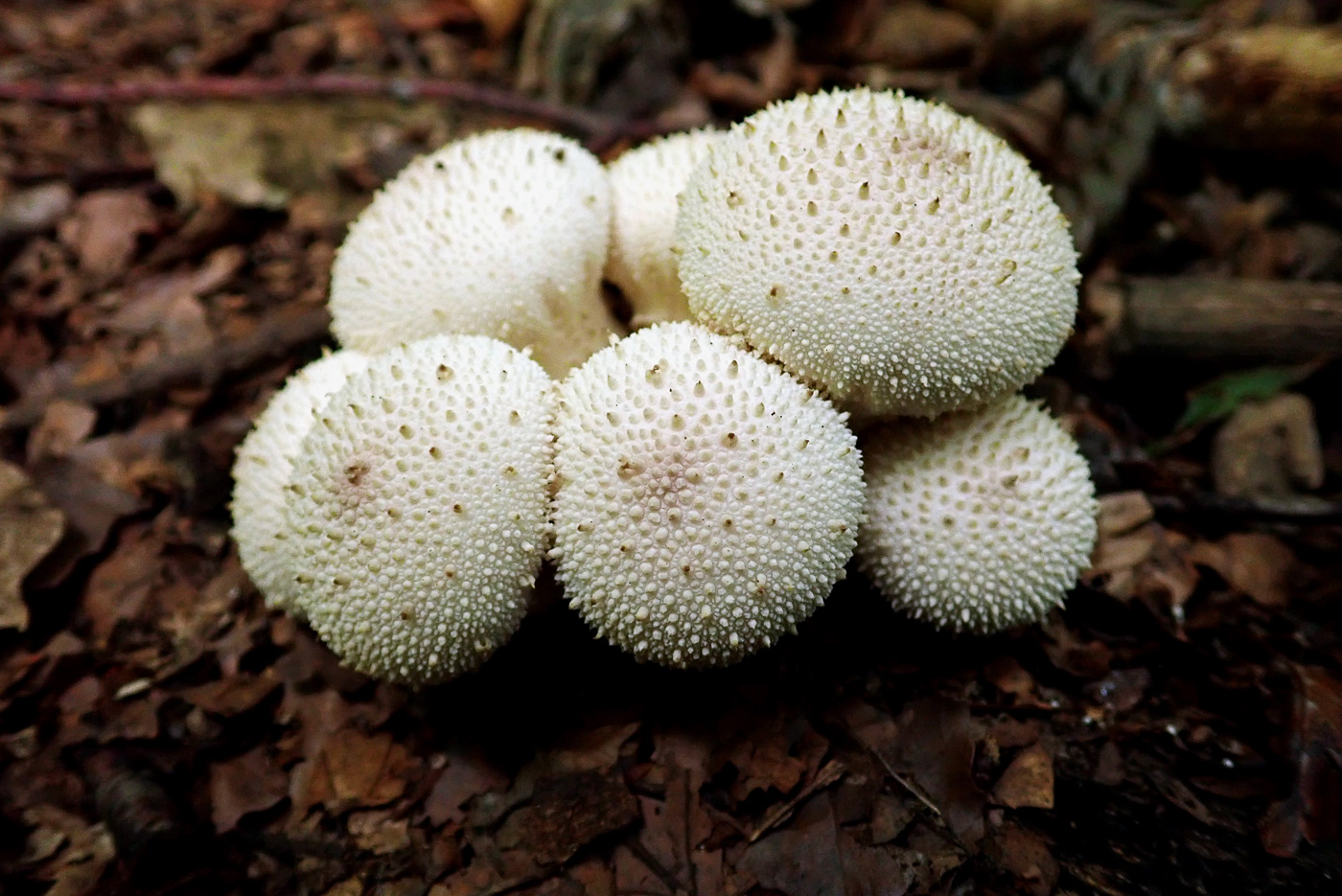 |
September 16th Lycoperdon perlatum (Common Puffball)
One of our commonest woodland fungi, this collection of fresh material was found by Penny Cullington in litter under Beech in Penn Wood. Note the pyramidal warts covering the surface, a feature missing from the Stump Puffball - our other really common woodland species (see photo dated Sept 13th for comparison). These warts rub off easily, leaving a meshlike pattern beneath. Though white when young, the fruit bodies turn gradually pale then darker brown when reaching the spore-puffing stage.
|
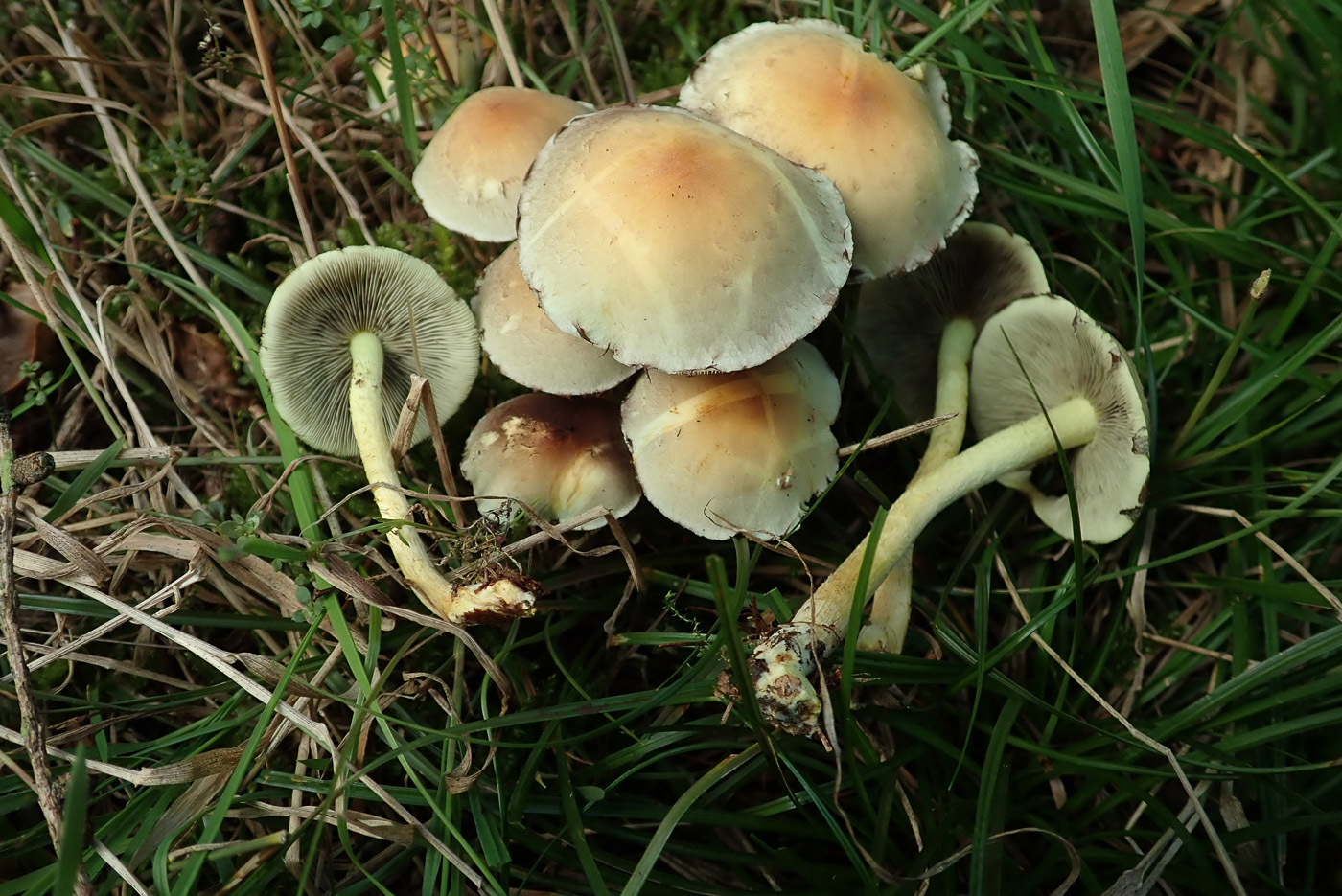
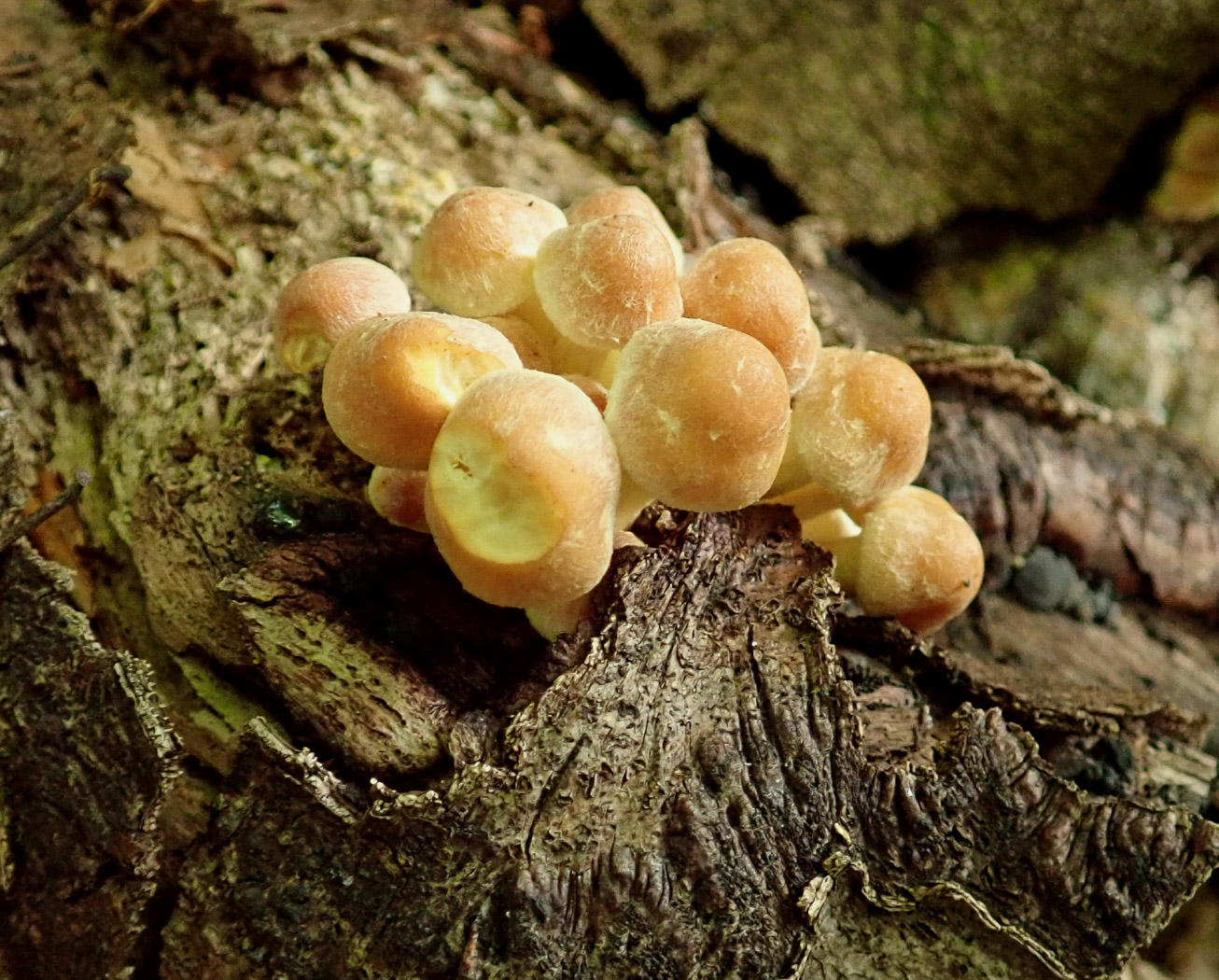 |
September 16th Hypholoma fasciculare (Sulphur Tuft)
This very common species seems to have only just started fruiting around here this season - both collections here were found on and around fallen wood by Penny Cullington in Penn Wood. Usually growing clustered and never far from some sort of wood, this is a species which will fruit at any time of year on many different types of wood. These two collections look superficially like two different species. Like many dark-spored mushrooms, when young the gills can be pale (sulphur yellow in this case) and only darken as the mature spores develop and then start falling. Note also in the mature specimens the cap edge which typically develops black patches. THIS SPECIES IS VERY POISONOUS!
|
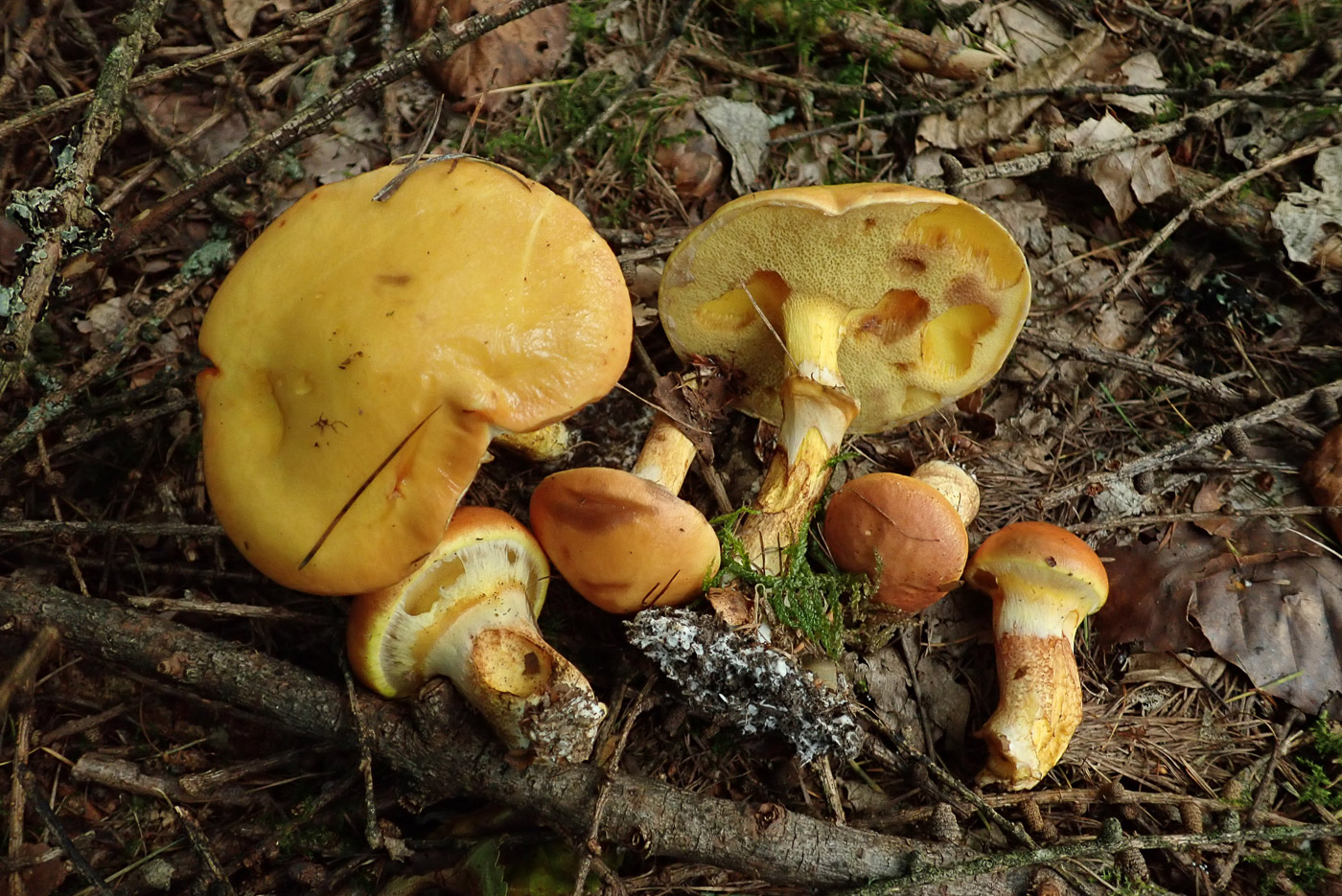 |
September 16th Suillus grevillei (Larch Bolete)
This collection was found by Penny Cullington under Larch at Penn Wood. Our previous photo (dated Sept 7th) was of a singleton specimen so today's varied collection, showing young specimens with the ring still unformed and thus hampering one from deciding upon gills or pores at this stage, is worth including. Prior to finding the mature specimens here and because the cap underside was still concealed, it was suspected that this was possibly a species of Gymnopilus (which has gills). All was revealed once a specimen with pores was found and the Larch substrate noted.
|
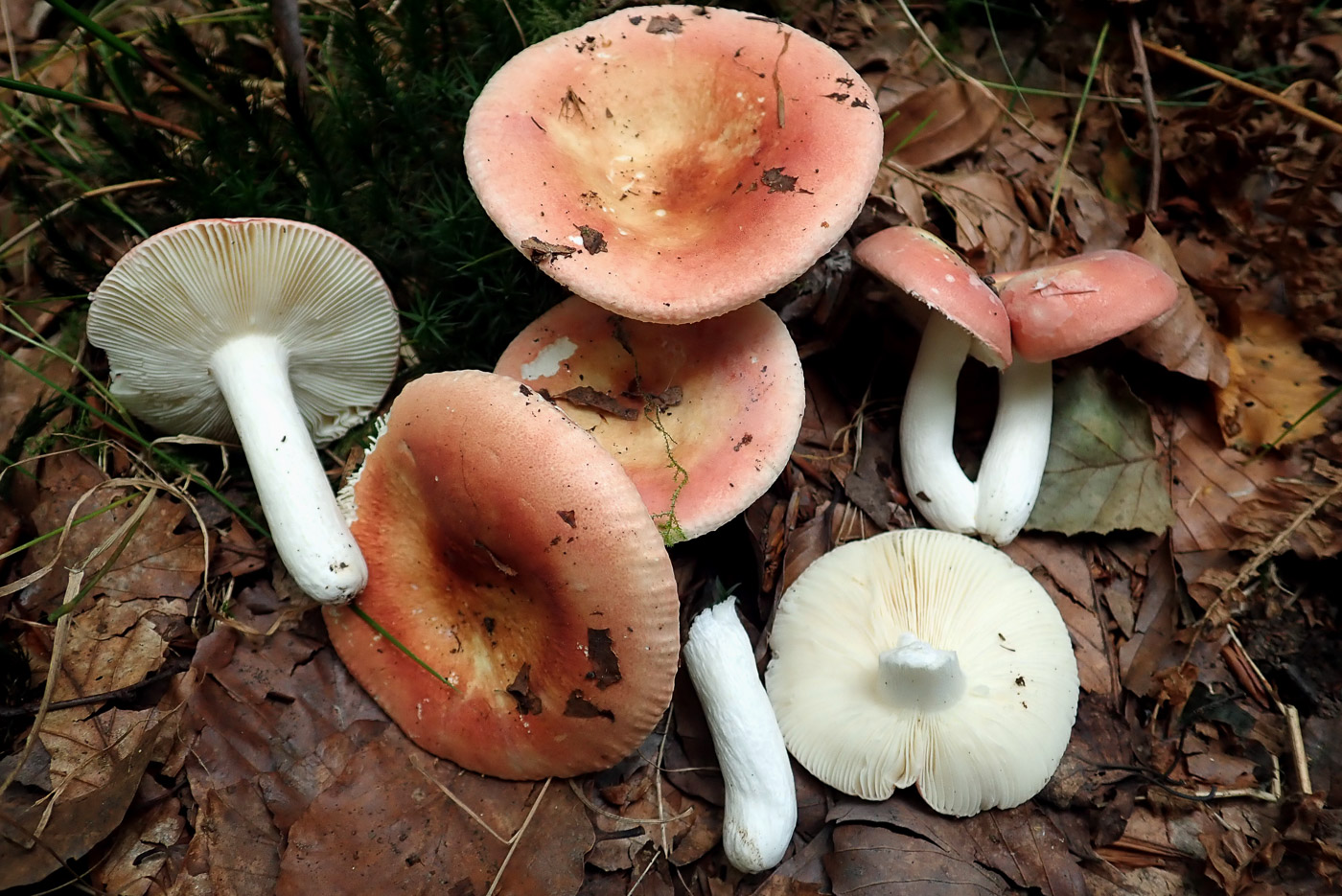 |
September 16th Russula aurora (Dawn Brittlegill)
Not to be confused with the similarly named and rare R. aurea (see photo dated Sept 13th), this fairly common Brittlegill was found in Penn Wood under Beech by John Catterson and Penny Cullington. Yet another species with red tones in the cap, this one has peach pink tones with a paler cream centre which is often slightly sunken. It has a pure white rather fragile stem and the gills are pale cream. (In some texts this is named Russula velutipes to add to the confusion!)
|
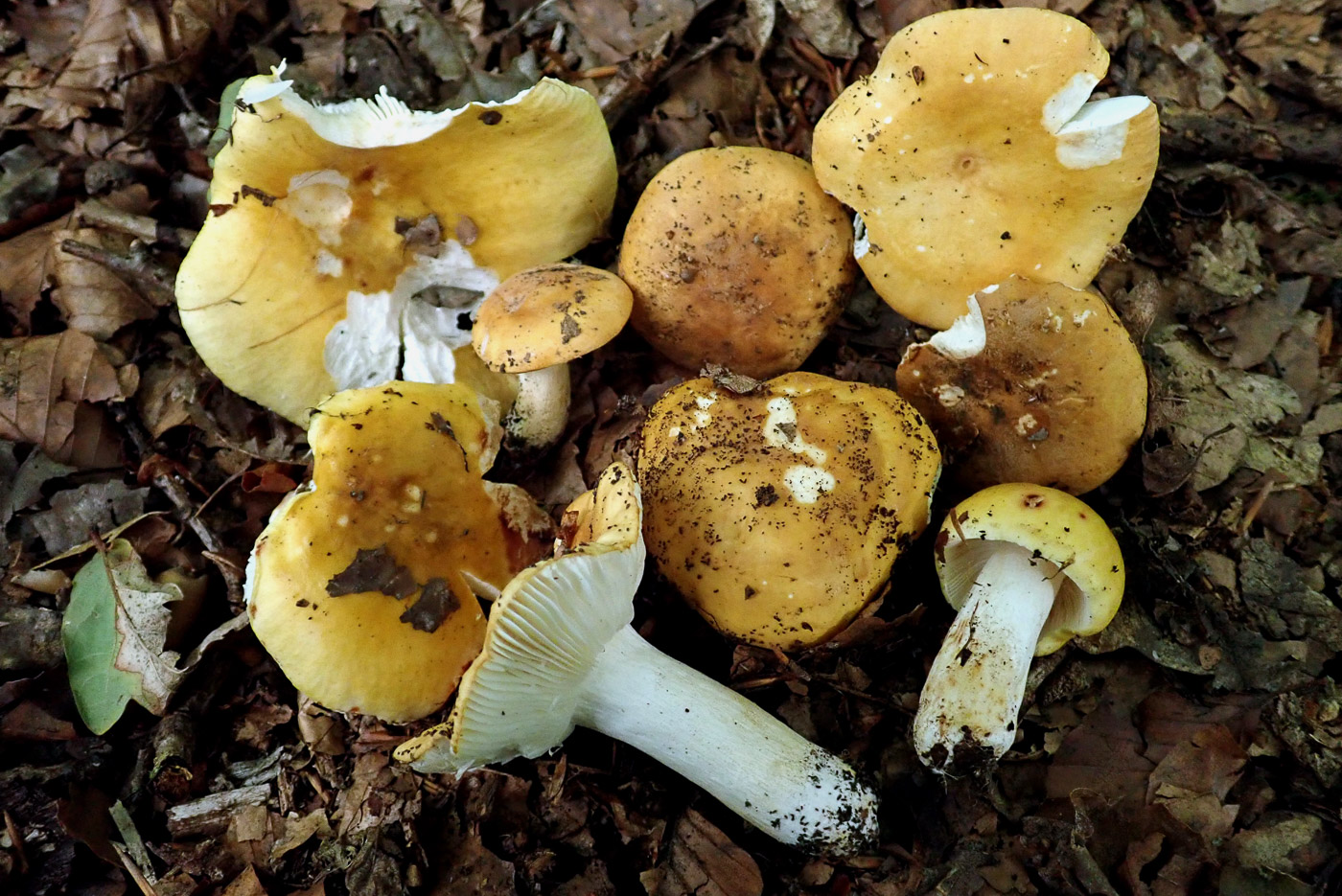 |
September 16th Russula ochroleuca (Ochre Brittlegill)
Probably our commonest Brittlegill, this collection was made at Penn Wood by Penny Cullington under mixed deciduous trees. This is not a fussy species and occurs under many trees, both deciduous and coniferous. Note the cap is rather dirty yellow with ochre tones in contrast to the bright yellow R. claroflava (see yesterday's photo). Another yellow species with which it is often confused is R. fellea (Geranium Brittlegill, host specific with Beech and not yet spotted this season). Note the white gills and stem of R. ochroleuca which clearly contrast with its cap colour, also it has no noticeable smell; in R. fellea the gills and stem are cream, not white, offering little contrast with the cap, also it has a sweet smell of stewed apple or Pelargonium leaves - hence its common name.
|
September 15th 2020
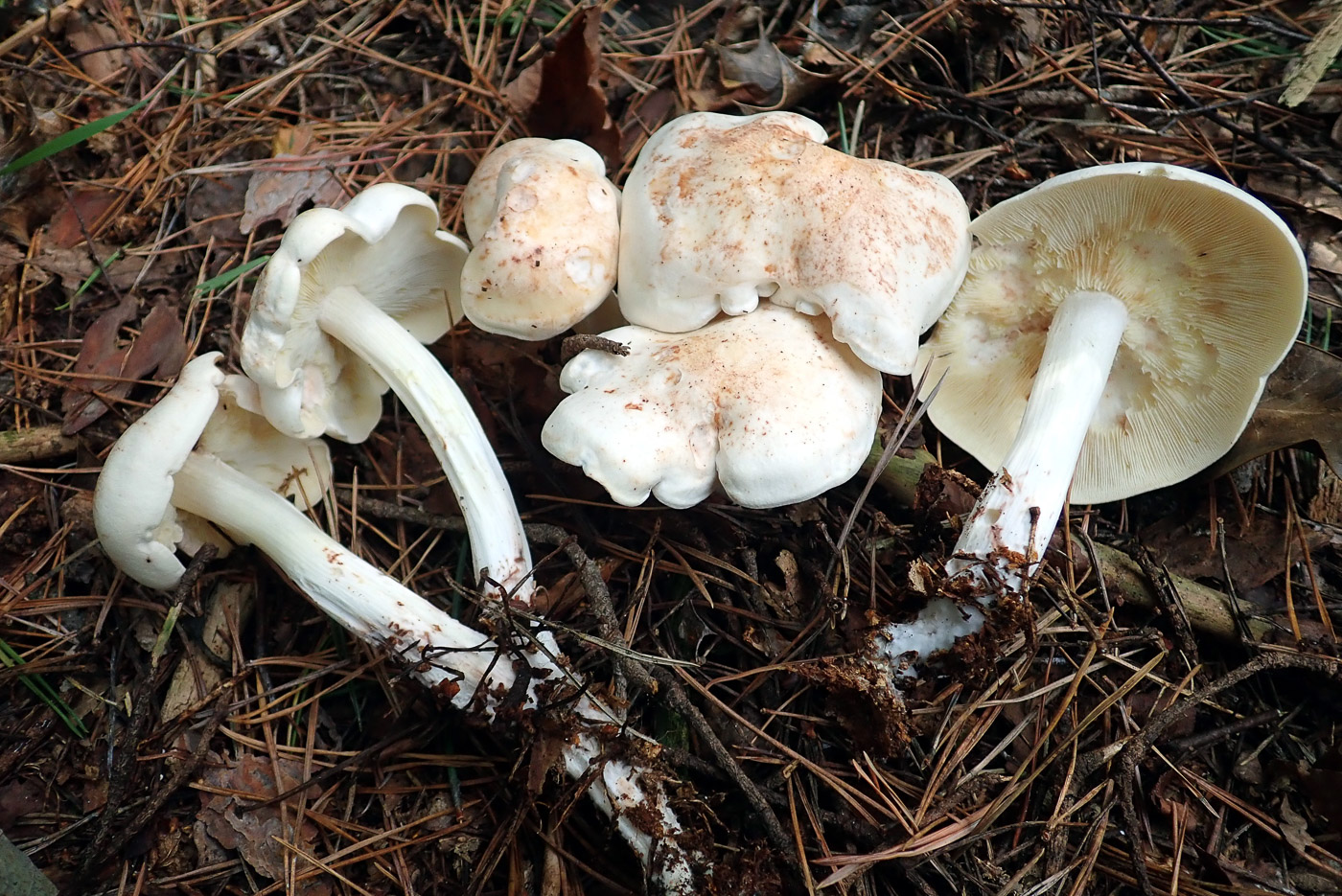 |
September 15th Rhodocollybia maculata (Spotted Toughshank / Cocoa Spot)
Penny Cullington found a large patch of this quite common species fruiting under Pine at Burnham Beeches. More familiar as Collybia maculata, its key characters are the white cap which develops chocolate spots as it matures (hence its older but more descriptive common name), its very crowded and tightly packed white gills and the rubbery flexible stem typical of what used to be the genus Collybia (now split into either Rhodocollybia or Gymnopus). It mostly occurs under Pine but also under deciduous trees.
|
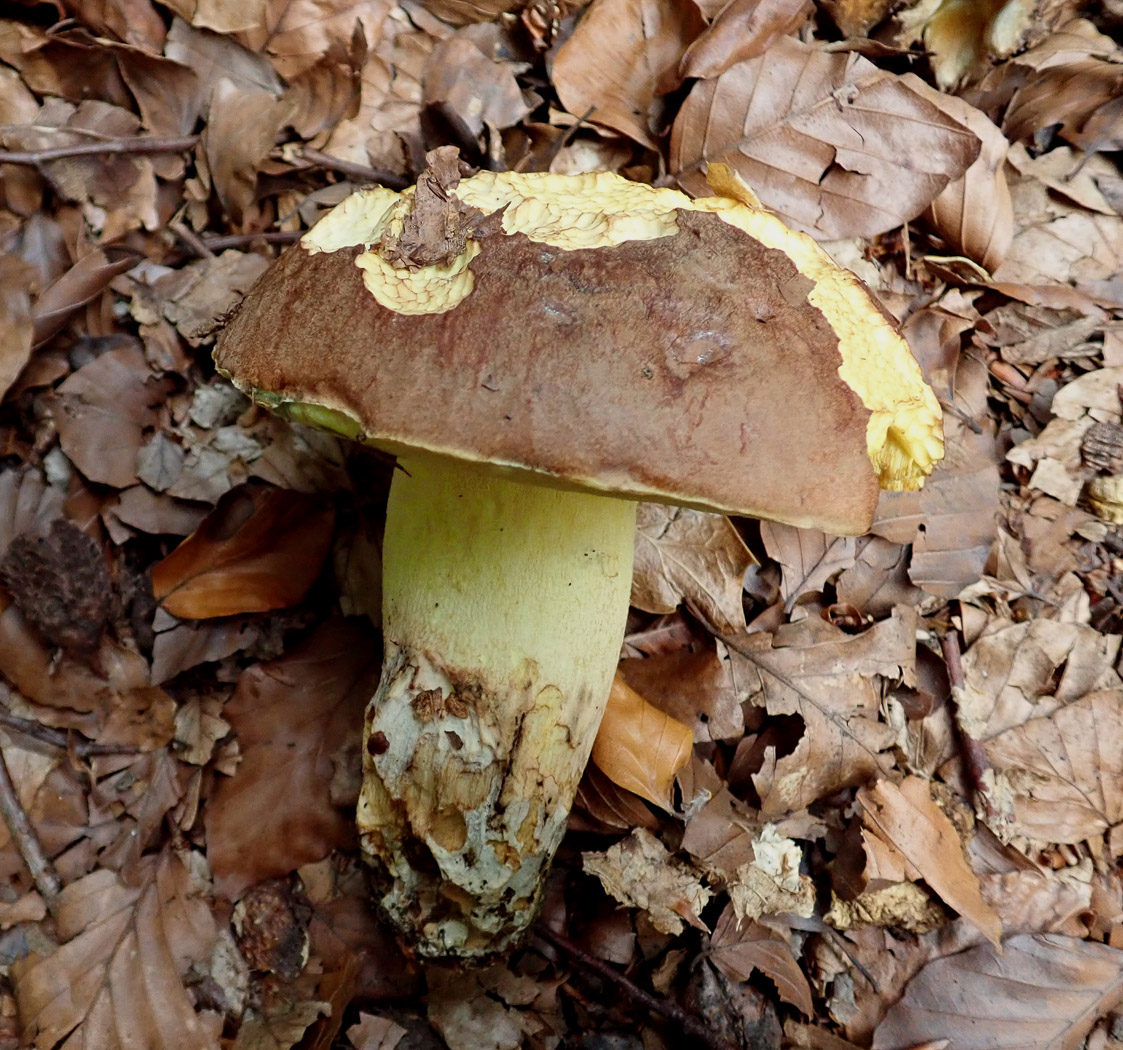
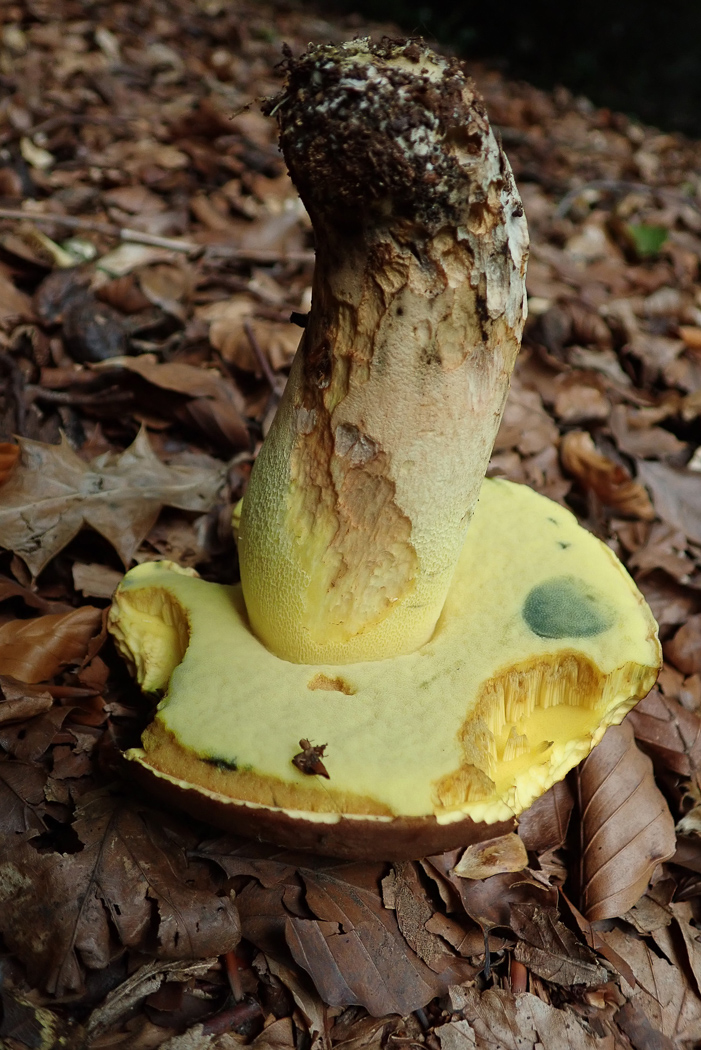 |
September 15th Butyriboletus appendiculatus (Oak Bolete)
This quite rare bolete (previously in the genus Boletus) was found by Penny Cullington under Beech at Burnham Beeches where it appears to be new for the site. This is a firm fleshed bolete, as in B. edulis, with a brown cap, very small yellow pores which blue when pressed and a cylindrical yellow stem marked with a fine concolorous network and darker brownish towards the often rooting base. Though the common name might suggest otherwise, this species can apparently occur under Oak, Beech (as here), Lime and Hornbeam.
|
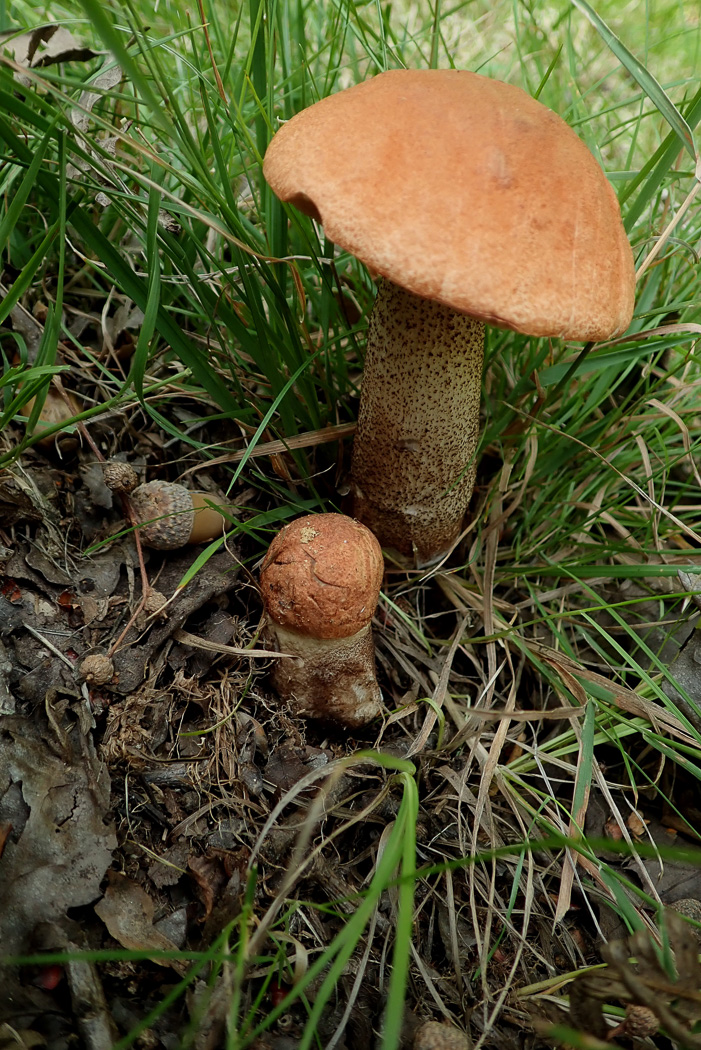
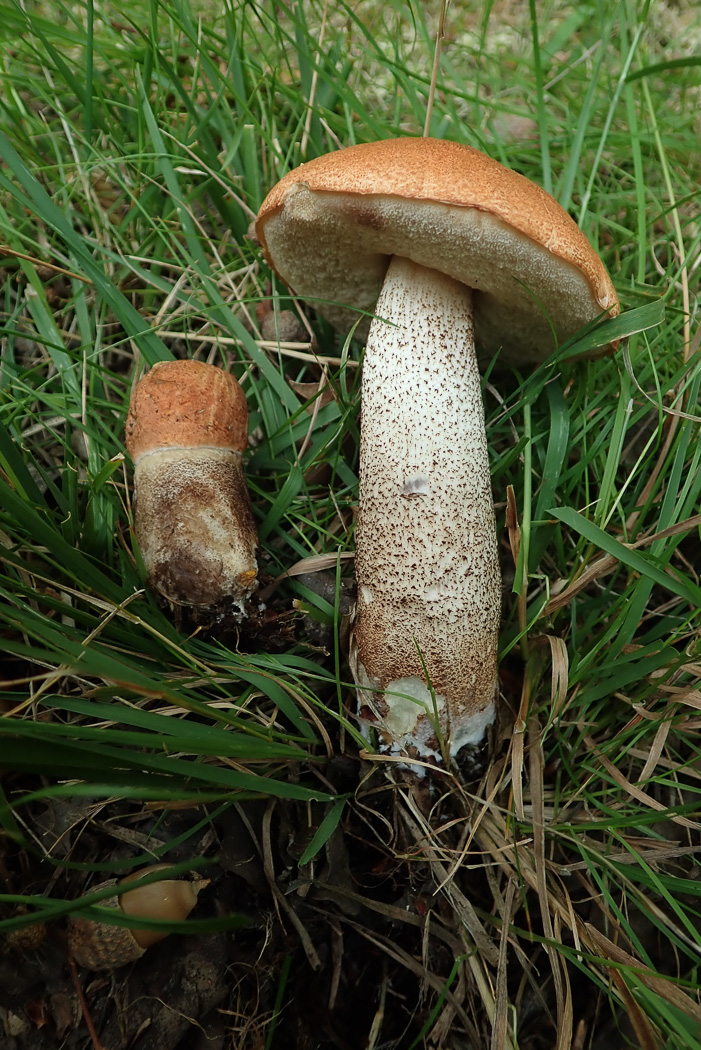
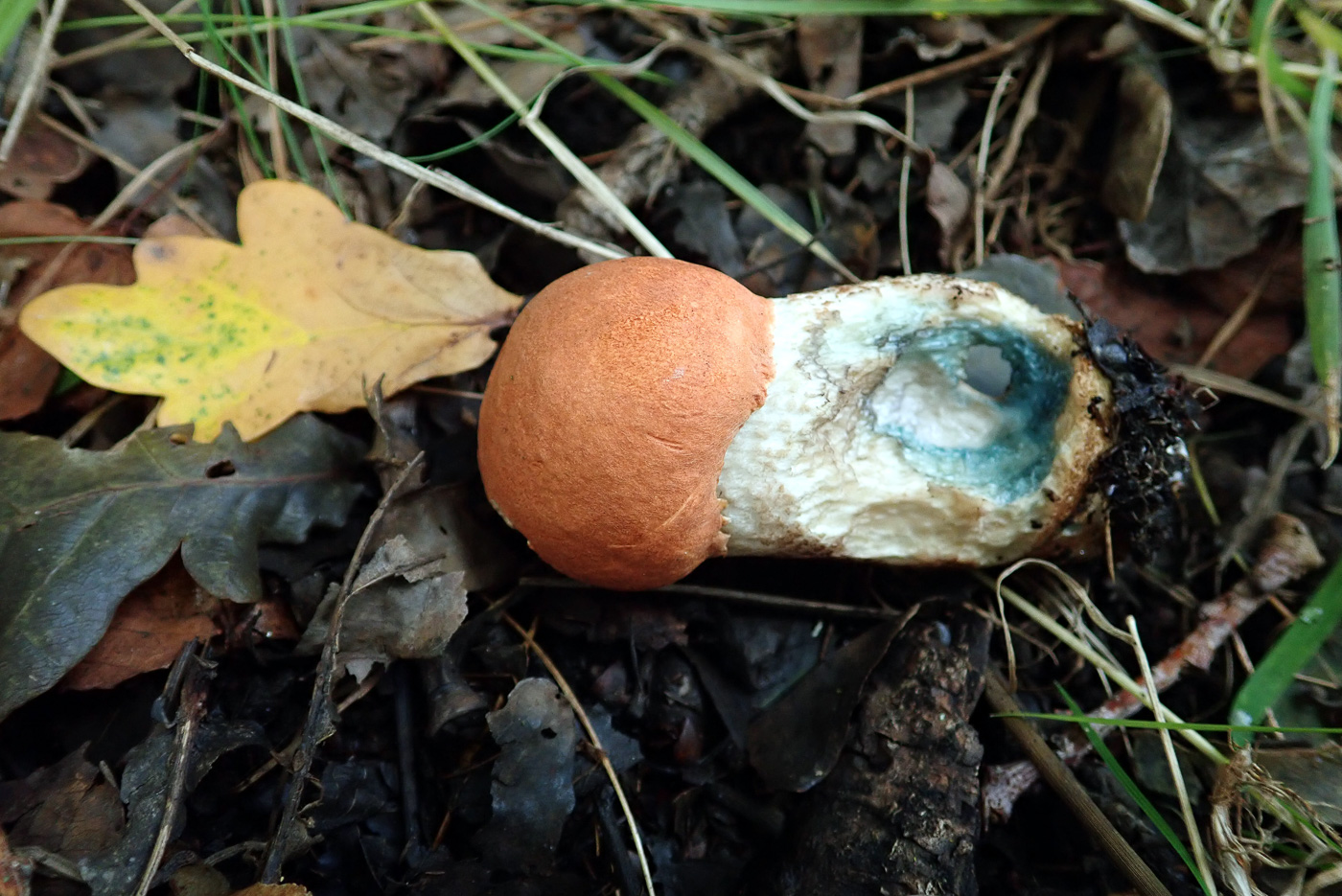 |
September 15th Leccinum aurantiacum (Orange Bolete)
One of the few species of Leccinum to grow with trees other than Birch, this species was found under Oak at Burnham Beeches by Penny Cullington. The foxy orange cap with rather uneven but firm surface together with the occurrence under Oak or Poplar separate it from other Leccinum species. The species has the typical pale pores and stem with dark scabers which characterise the genus though in this case the scabers are tinged with the foxy orange cap colour. An occasional species but not rare. (Note in the third photo the typical blue green staining at the stem base where eaten by slugs, a feature which can occur in this and a few others in the genus - this specimen found at Stoke Common, Sept 25th.)
|
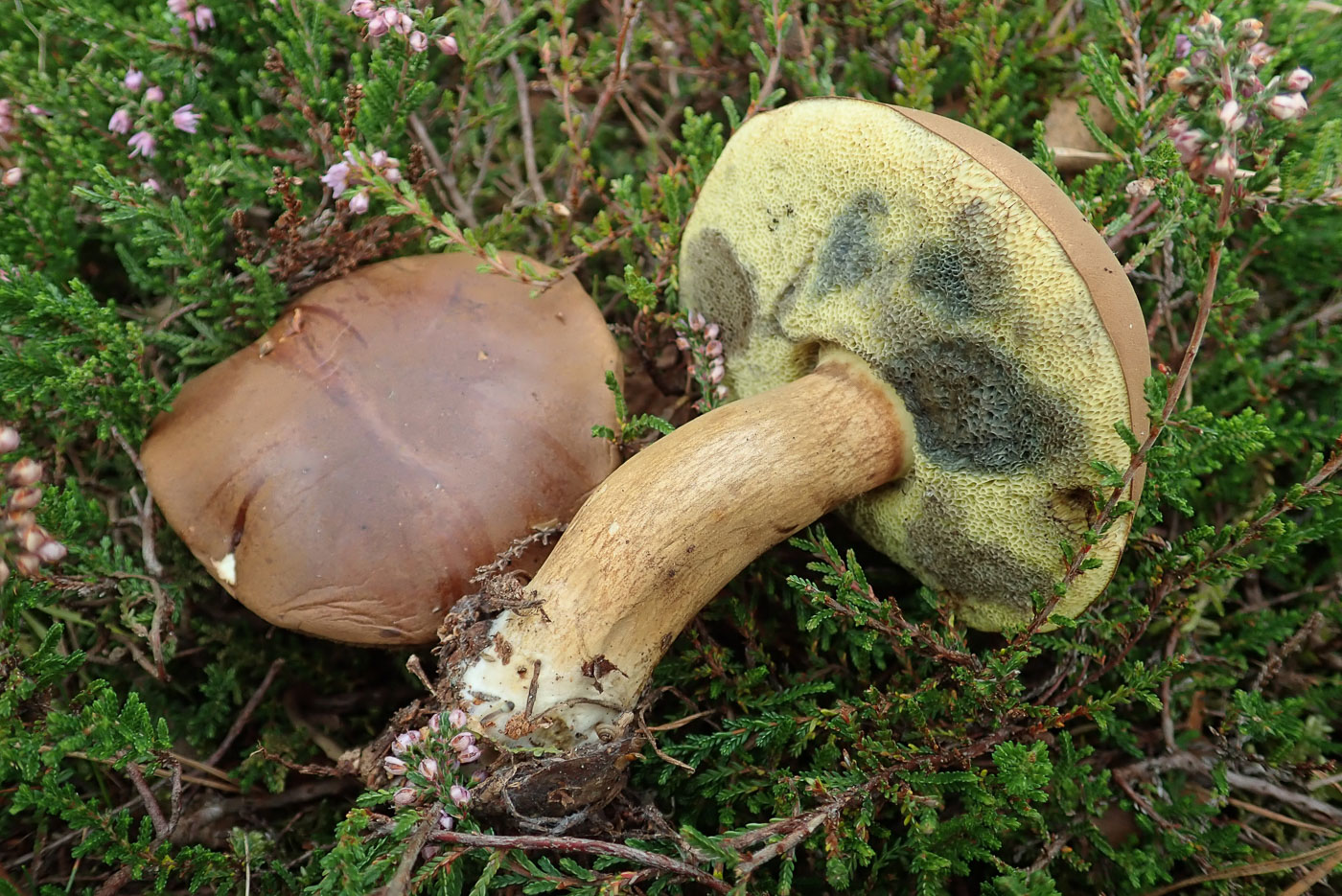 |
September 15th Imleria badia (Bay Bolete)
More familiar as Boletus badius, this common bolete was found under Birch and Pine at Burnham Beeches by Penny Cullington. It has a smooth brown cap which can be sticky when moist, lemon yellow pores which turn blue instantly when pressed and a cylindrical stem with similar brown colours to the cap. The stem colour and lack of cracking of the cap together with the instant blueing are usually sufficient characters to make an identification in this difficult group of species, many of which appear superficially extremely similar.
|
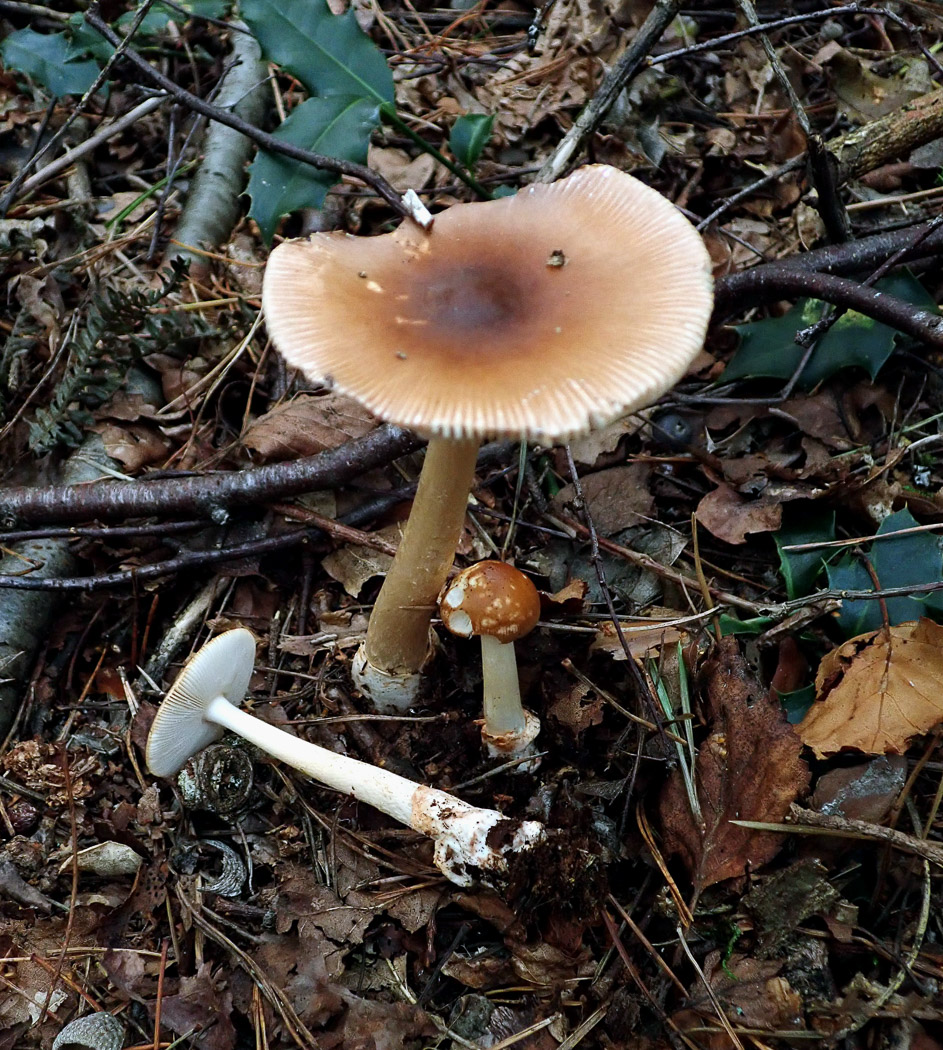 |
September 15th Amanita fulva (Tawny Grisette)
This common species was widespread today under mixed deciduous trees at Burnham Beeches, found by Penny Cullington. A delicate Amanita, the stem tapers upwards, lacks a ring and has a flimsy volva which is easily damaged on collection and is tinged with the fulvous brown of the cap. The cap is shiny, has a striate edge and can sometimes have remnants of white veil (not seen in the photo here). There are other less common but similar species of Amanita which lack a ring; note the intense cap colour, brown tints on the volva and lack of markings on the stem to separate this particular species.
|
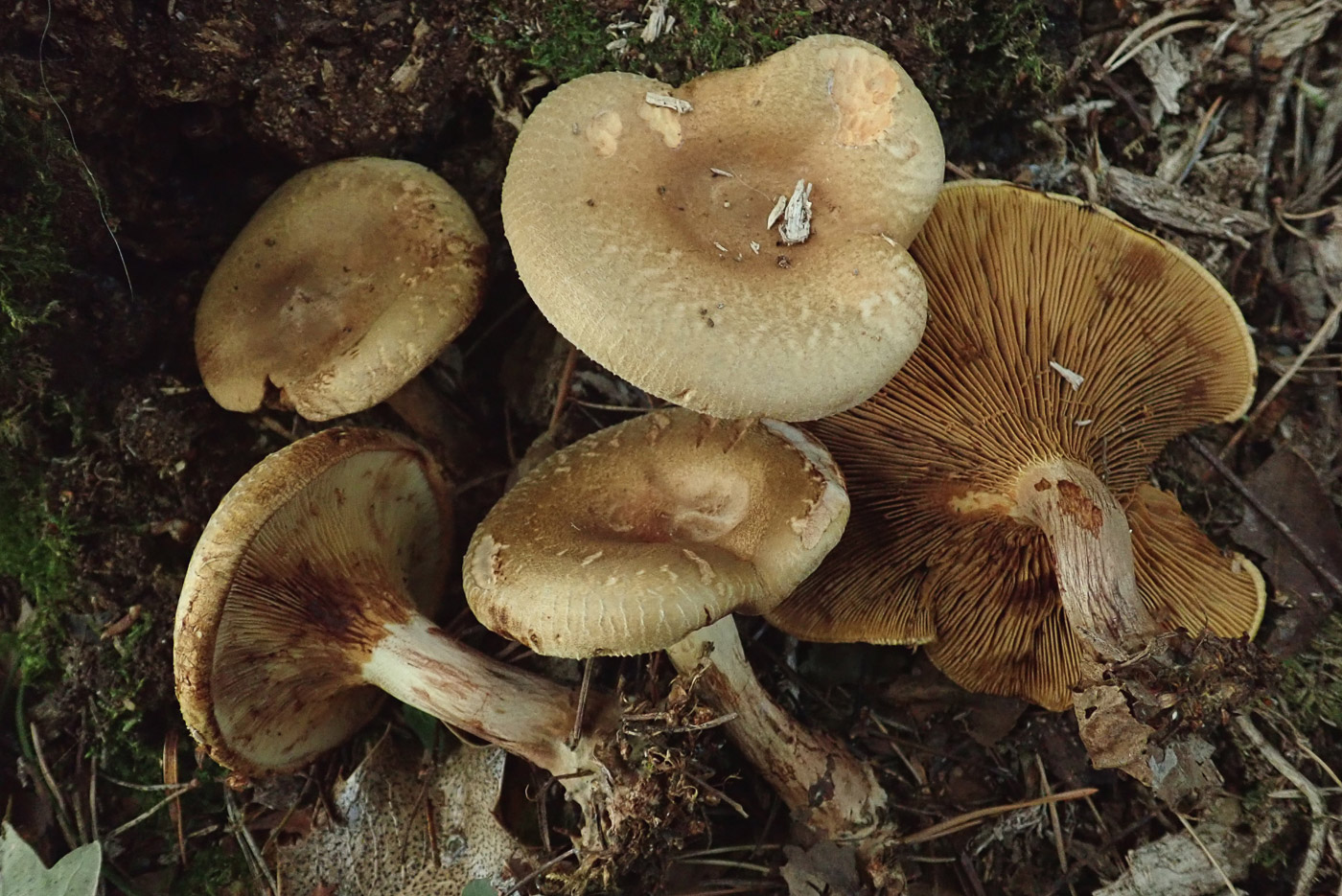 |
September 15th Paxillus involutus (Brown Rollrim)
One of our commonest woodland mushrooms, this is just beginning to appear now and was found at Burnham Beeches under Birch by Penny Cullington. It is sometimes not easy to distinguish from other brown capped mushrooms because the diagnostic tightly inrolled cap margin of the species is gradually lost as it expands - eventually completely lost as seen in the upturned specimen. Look for young fruitbodies, therefore, and also note the decurrent gills and brown bruising which occurs when damaged. This species can sometimes get very large with caps up to 15 cm across or more.
|
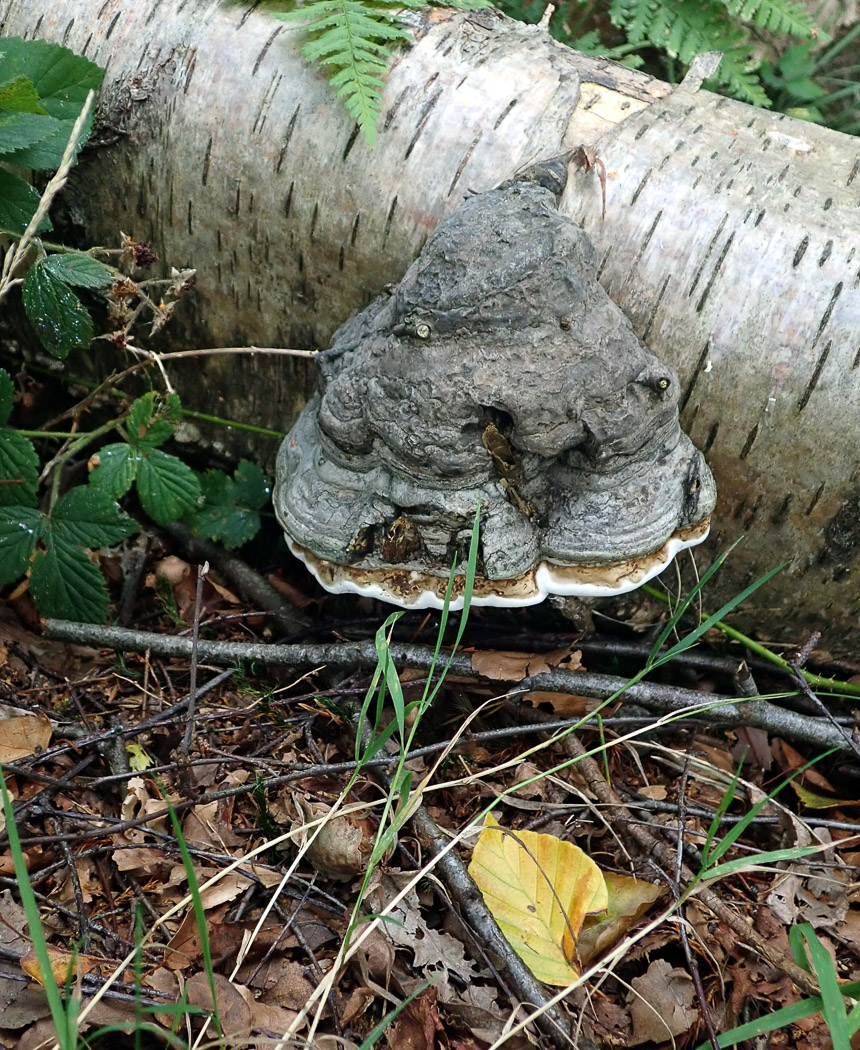 |
September 15th Fomes fomentarius (Hoof Fungus)
Penny Cullington found this aptly named and quite rare bracket growing on fallen Birch at Burnham Beeches. A few years ago this species was hardly known in the south though was quite common in Scotland and N. England - always on Birch. It now seems to be spreading rapidly south and is recorded from several sites in the county but is still considered a rarity.
|
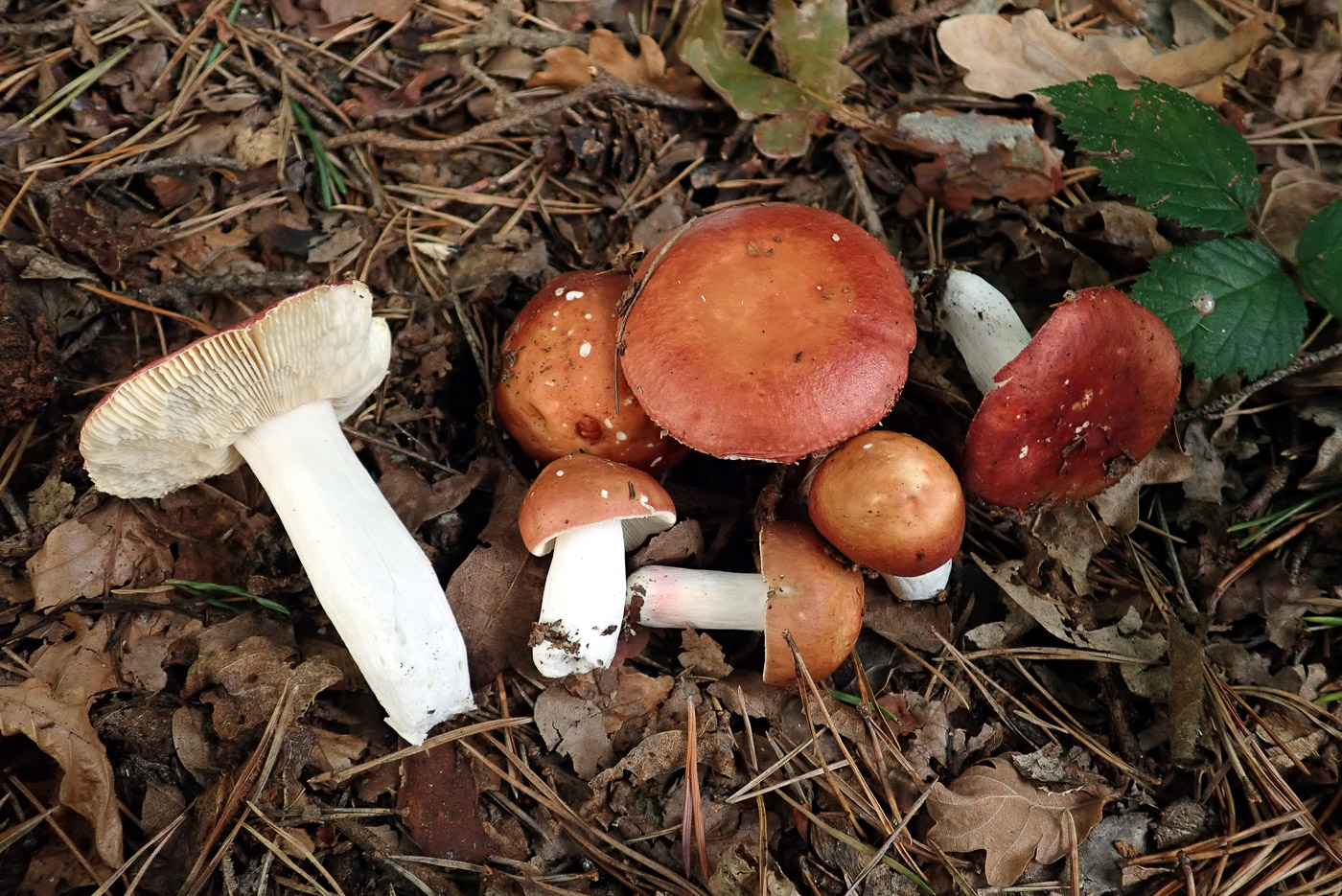 |
September 15th Russula velenovskyi (Coral Brittlegill)
Penny Cullington found this collection under mixed deciduous trees at Burnham Beeches. One of the many red-capped Brittlegills, the cap of this species has subtle brick to orange or coral red tones and is usually distinctly paler in the centre where often slightly domed. Note also the slight pink flush on the stem sometimes present and seen here on the central young specimen. It is fairly common under deciduous trees, particularly Oak.
|
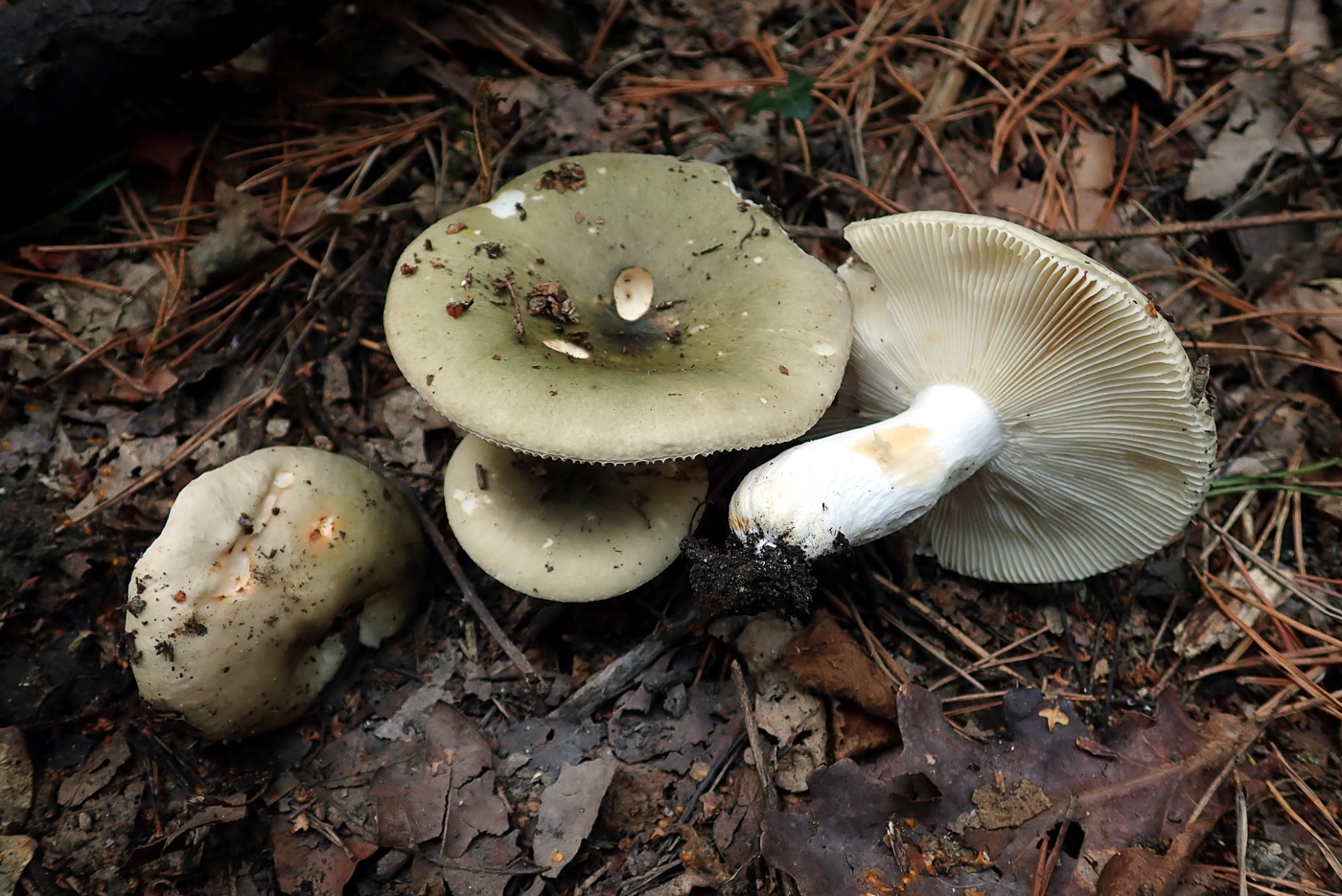 |
September 15th Russula aeruginea (Green Brittlegill)
Penny Cullington found this collection under Birch at Burnham Beeches. There are several green-capped Brittlegills which are quite common in deciduous woodland. Characters to look out for in this species are the rusty spots which can usually be found on the cap (here seen on the immature specimen) and the cream rather crumbly gills. The somewhat similar R. heterophylla (Greasy Green Brittlegill) has much more flexible gills, but the safest way to split them in the field is by rubbing a Ferrous Sulphate crystal on the stem which turns it weakly rusty in R. aeruginea (seen on the upturned specimen) but instantly strongly salmon pink in R. heterophylla.
|
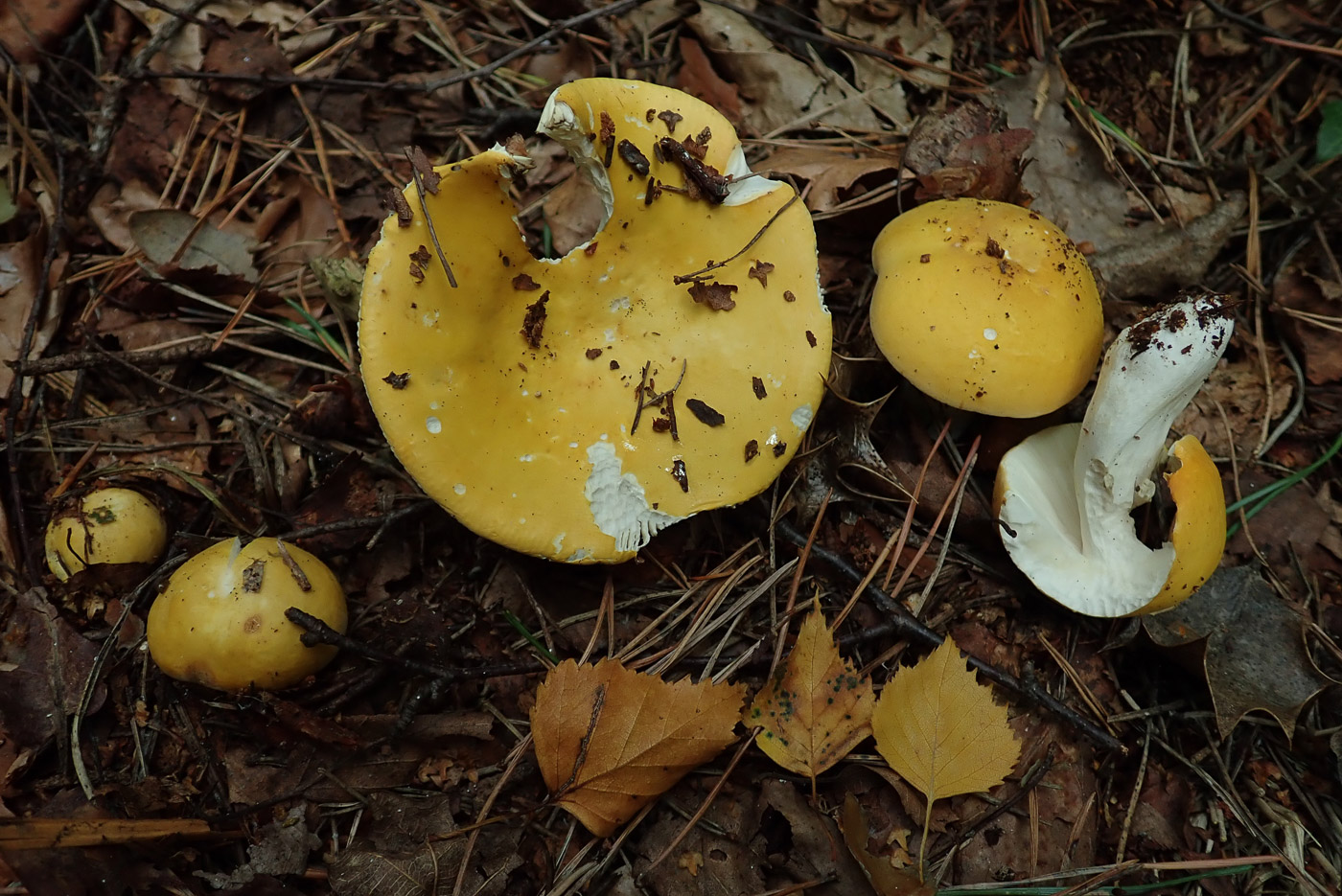
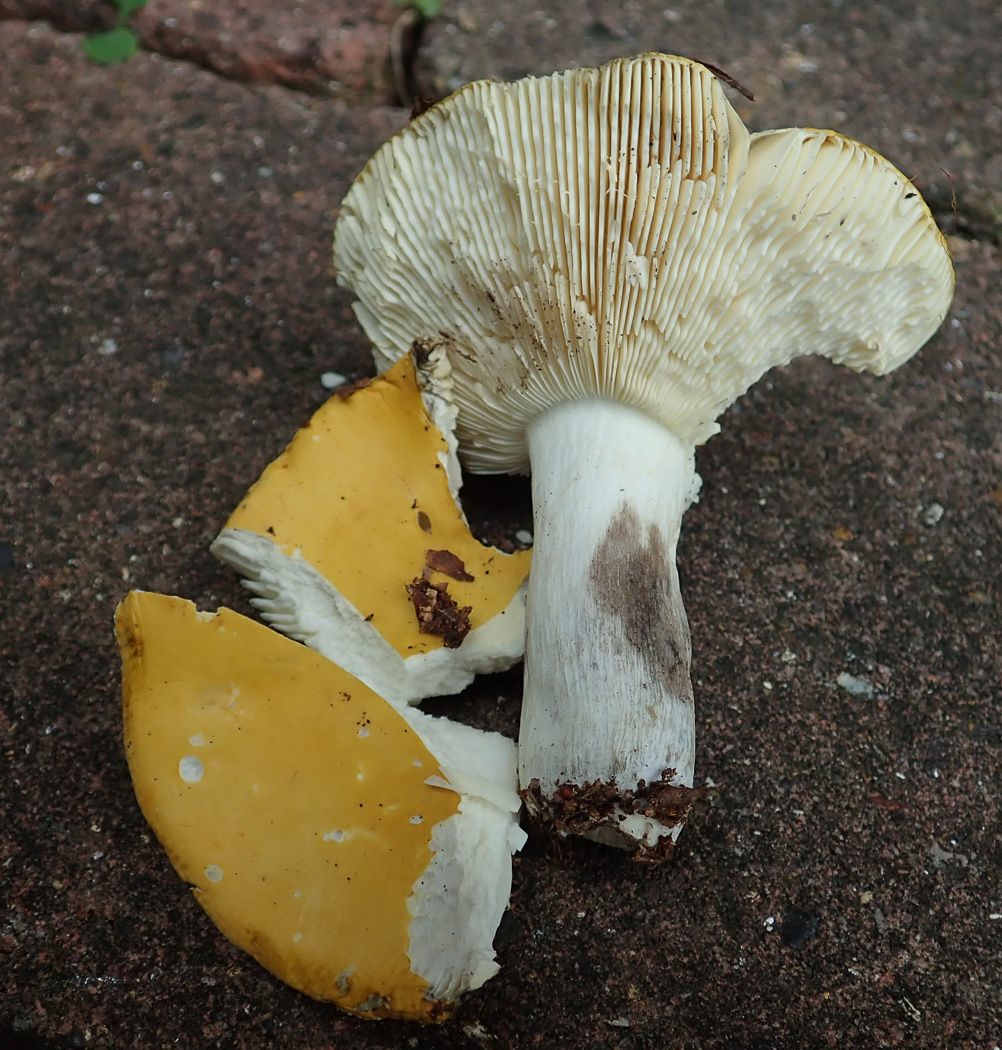 |
September 15th Russula claroflava (Yellow Swamp Brittlegill)
Penny Cullington found this collection under Birch (with which the species is host specific) at Burnham Beeches. There are several yellow capped Brittlegills but this species is by far the brightest yellow and should not be confused with others, particularly with R. ochroleuca (Ochre Brittlegill) which is our commonest yellow species. If you think you've found R. claroflava, scratch the stem and within an hour or two the scratch will turn first pinkish and then grey-black - this is the only yellow species to show this colour change (see second photo).
|
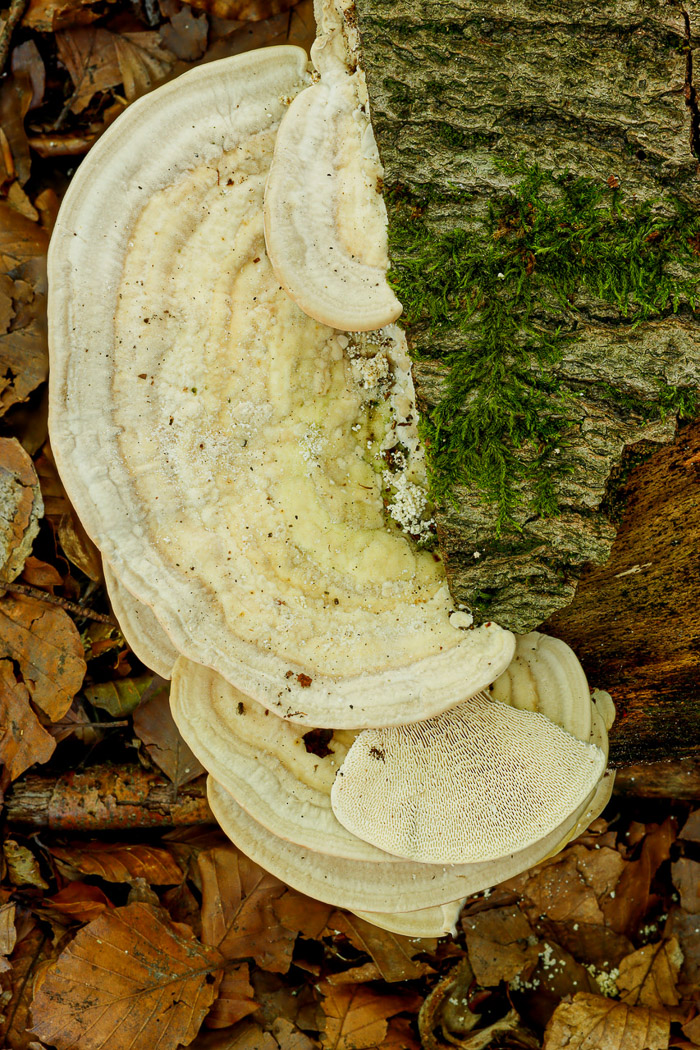
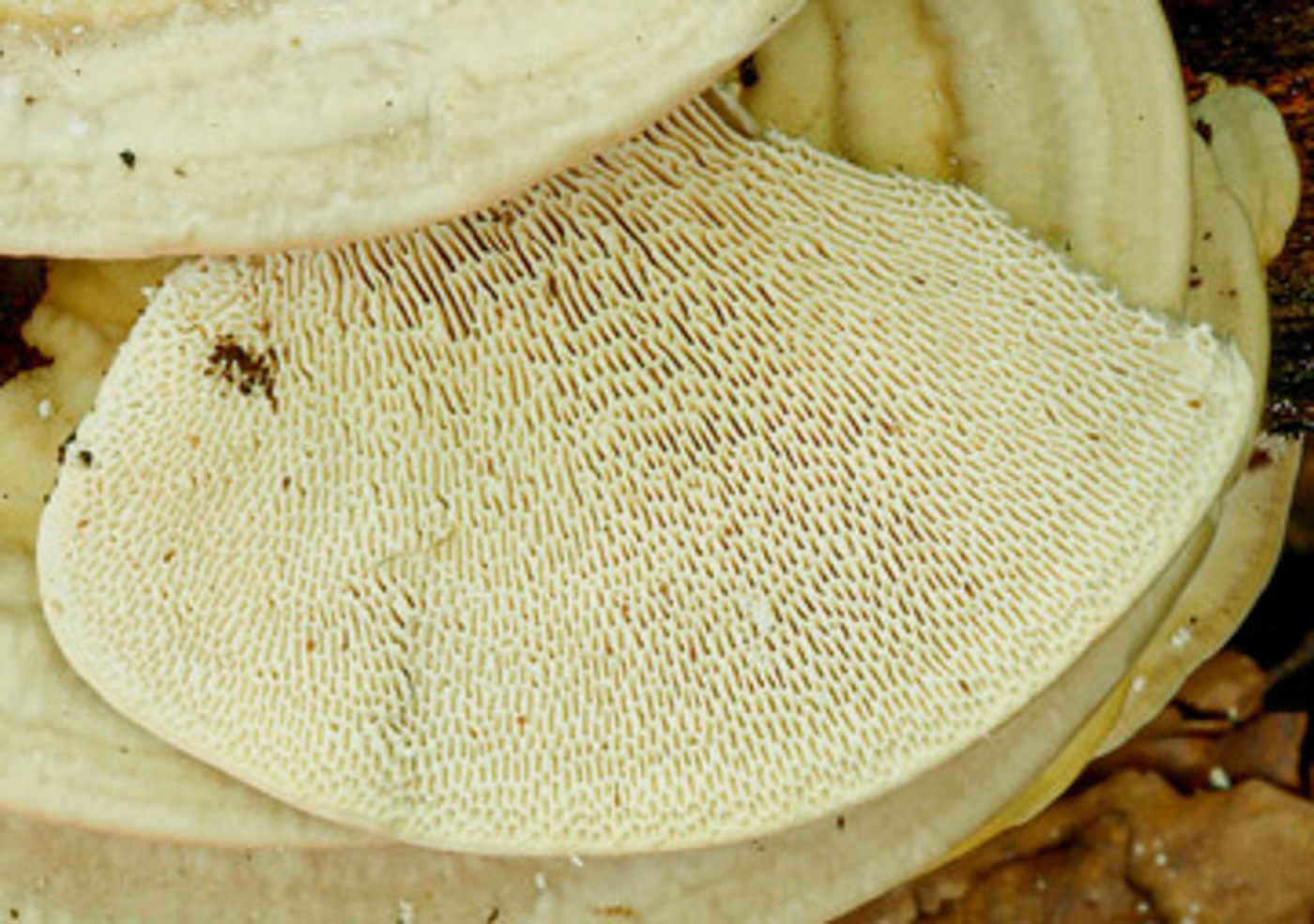 |
September 15th Trametes gibbosa (Lumpy Bracket)
Paul Goby found this common bracket on the end of a felled Beech trunk in Naphill Common. The pale zoning on the top is typical, also the green algi which is just beginning to develop (often a useful clue to identification). The flesh is extremely tough making it difficult to remove from the substrate and the pores below have a maze-like almost gill-like appearance, visible in the piece Paul cut off to show this diagnostic feature.
|
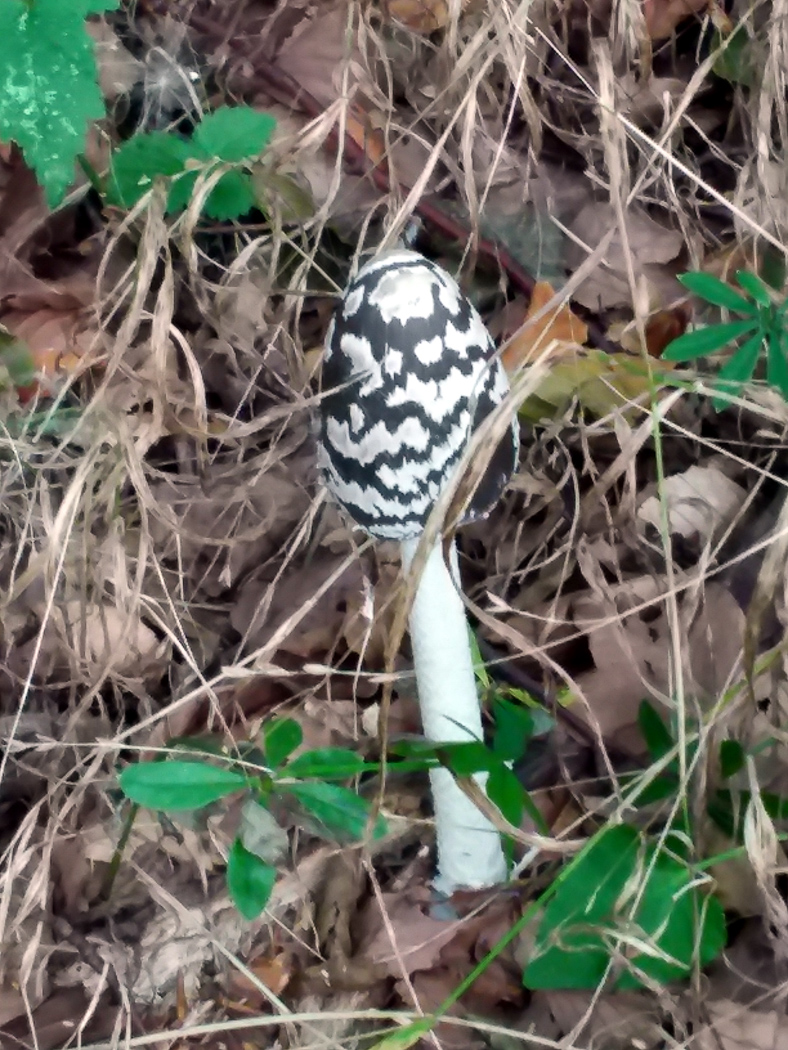 |
September 15th Coprinopsis picacea (Magpie Inkcap)
This is perhaps our largest and most distinctive Inkcap in appearance and was found by Toni Standing in deciduous litter in Bradenham Wood. The common name is apt, describing the large white patches of veil which adhere to the dark cap beneath, and it has a thick sturdy stem with a somewhat swollen base, also a very nasty smell. By the next day the cap would have been deliquescing with drops of black 'ink' dripping from its upturned cap margin.
|
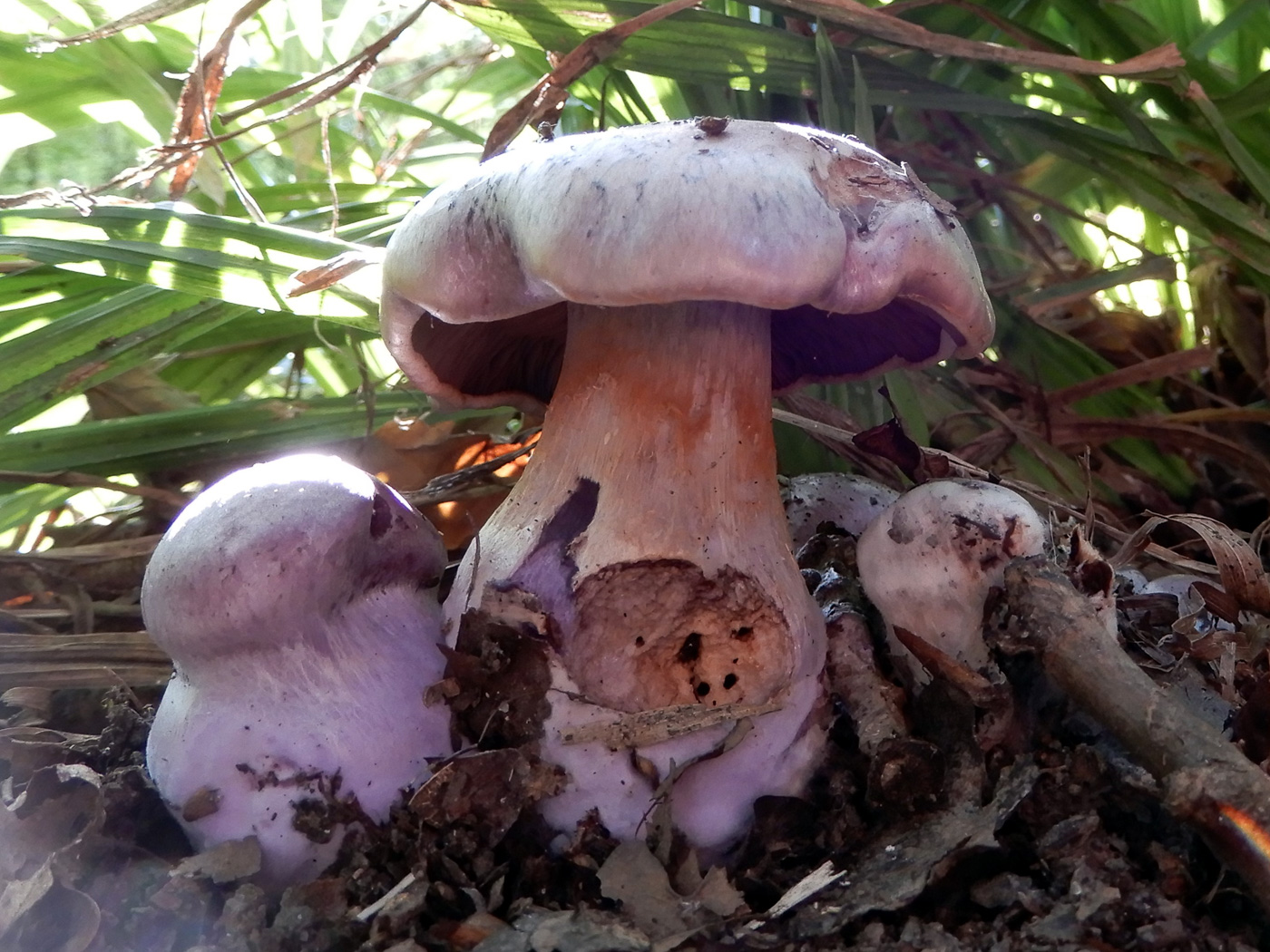
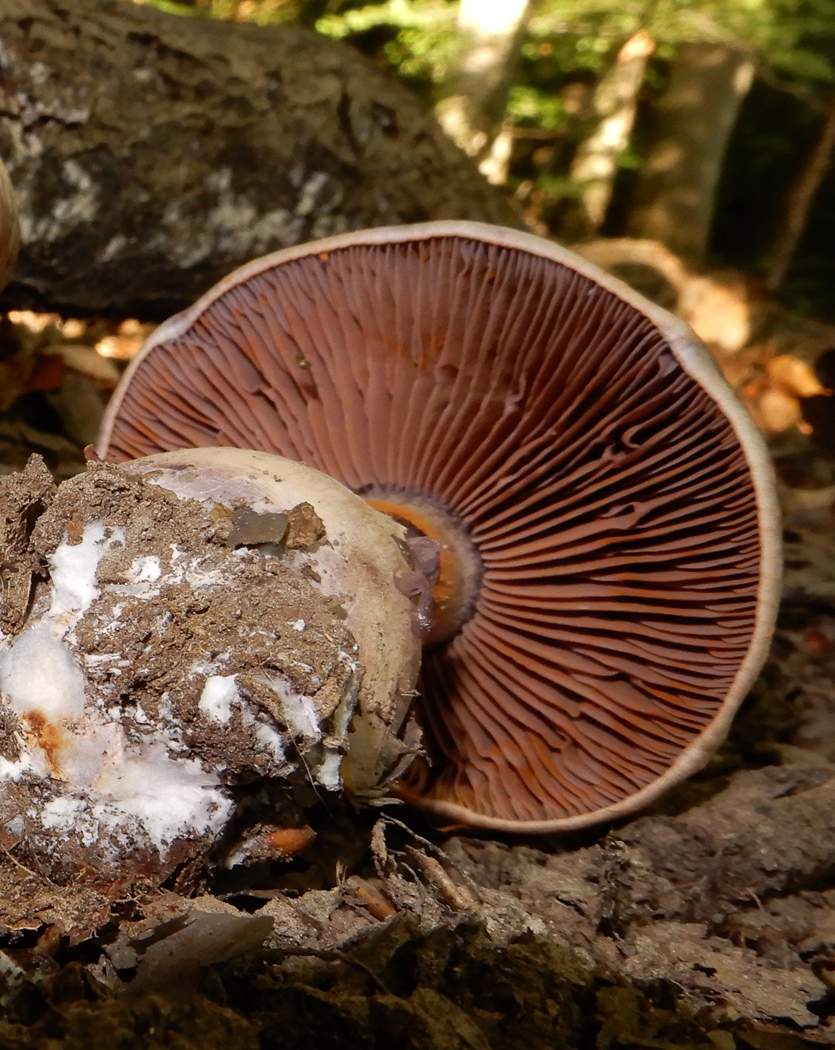
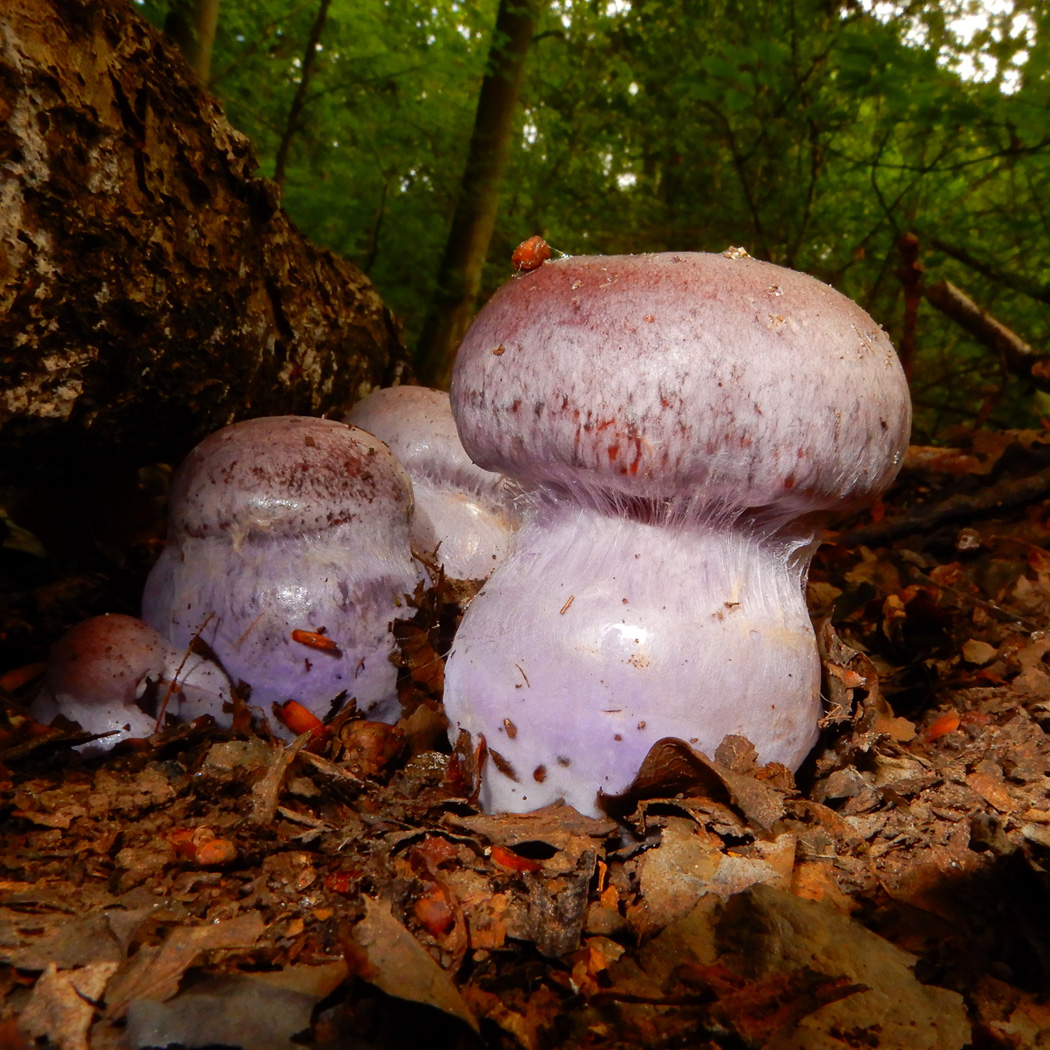 |
September 15th Cortinarius collocandoides (Bruising Webcap)
Our first Webcap of the season, this beautiful fungus was found under Beech in Moorend Common by Margaret Bolton where it comes up every year and has been previously identified by expert Geoffrey Kibby. Note the rusty spores of the genus visible both on the mature gills and where they've typically fallen onto the stem, also the 'cortina' (weblike mesh of fibrils) which join the cap to the stem before it expands - visible in the very young specimens. Finally note the purple stem flesh of this species when damaged (hence the name 'bruising') and visible in the largest upright specimen.
|
September 13th 2020
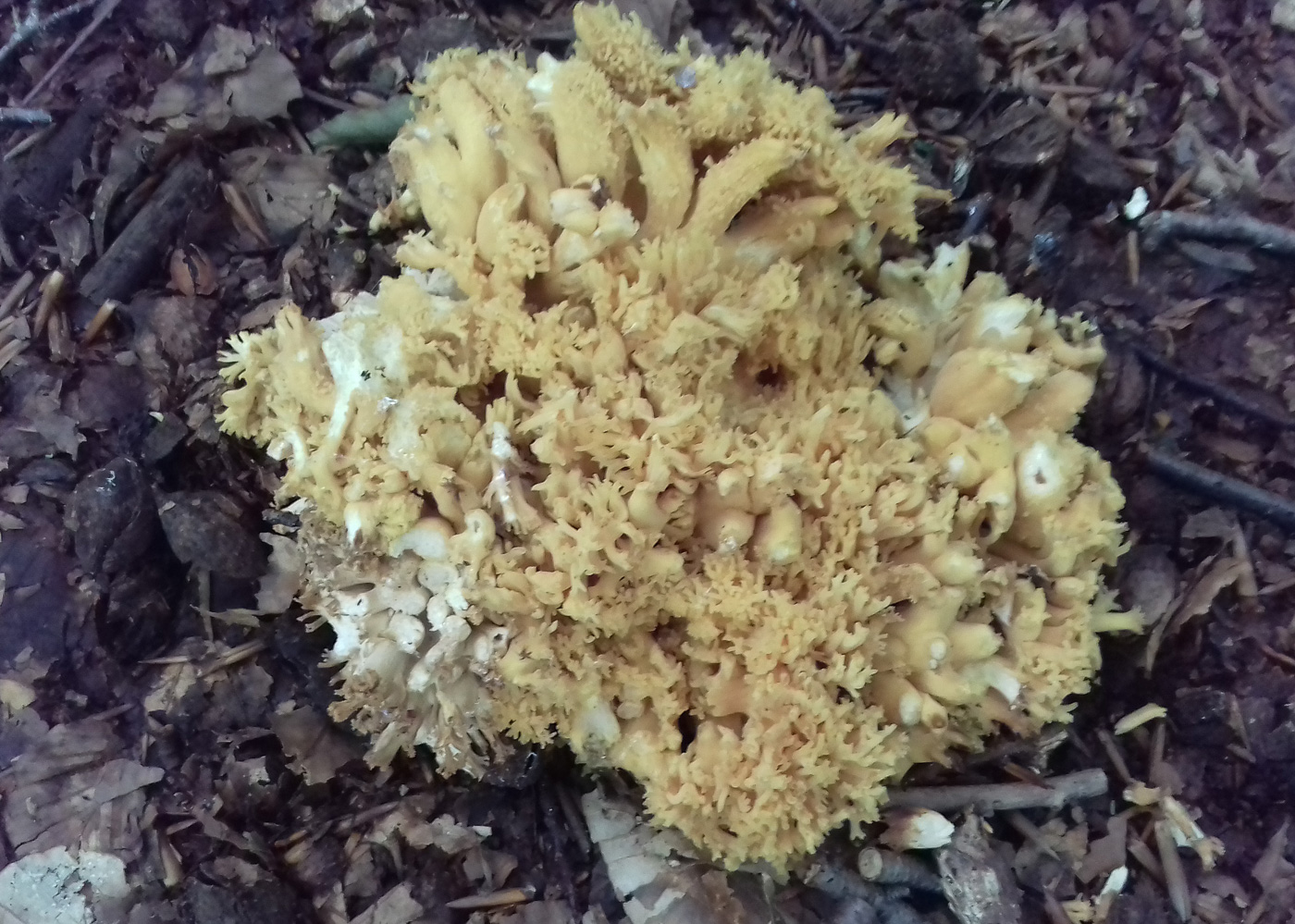
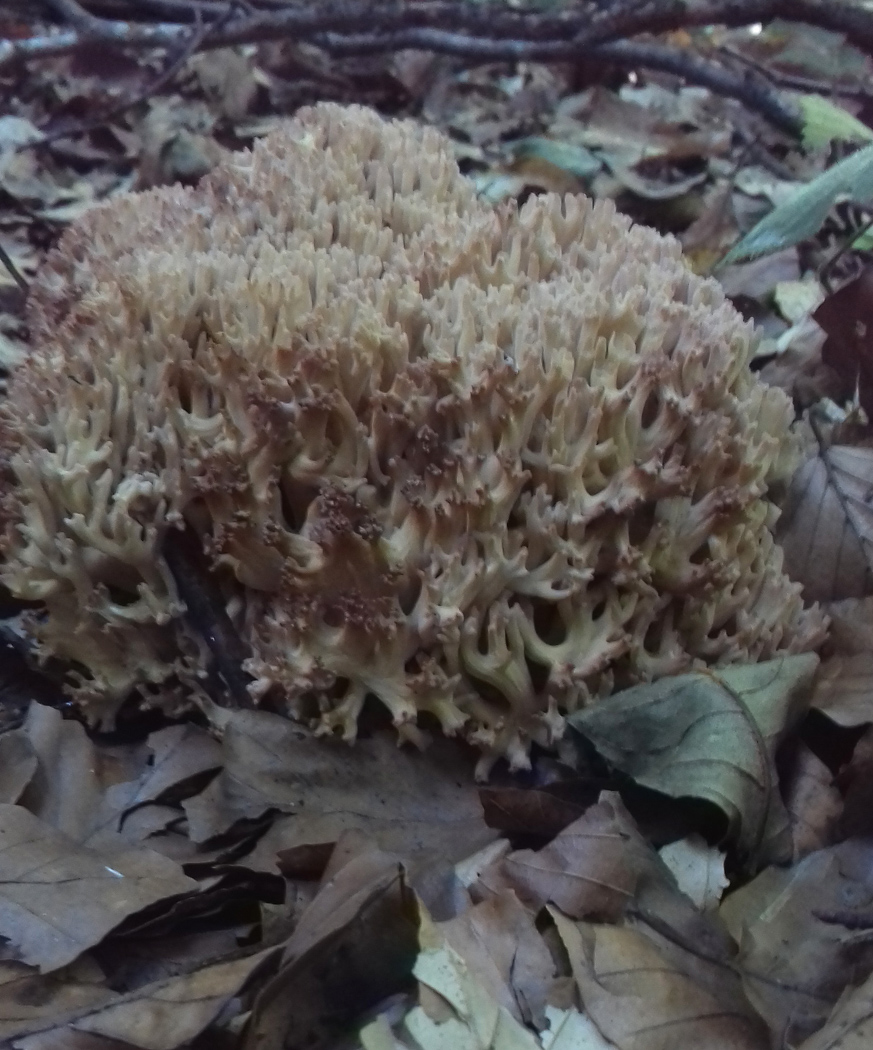 |
September 13th Ramaria flava (no common name)
Richard Fortey found this very rare coral fungus in litter under Beech at Pullingshill Wood (photo Andrew Padmore), a new species for Bucks with extremely few recent records in the UK. We commonly find Ramaria stricta (Upright Coral) in our woodlands and can identify it in the field but seldom find other species of the genus, all of which need careful work with a scope to identify  here undertaken by Richard. here undertaken by Richard.
|
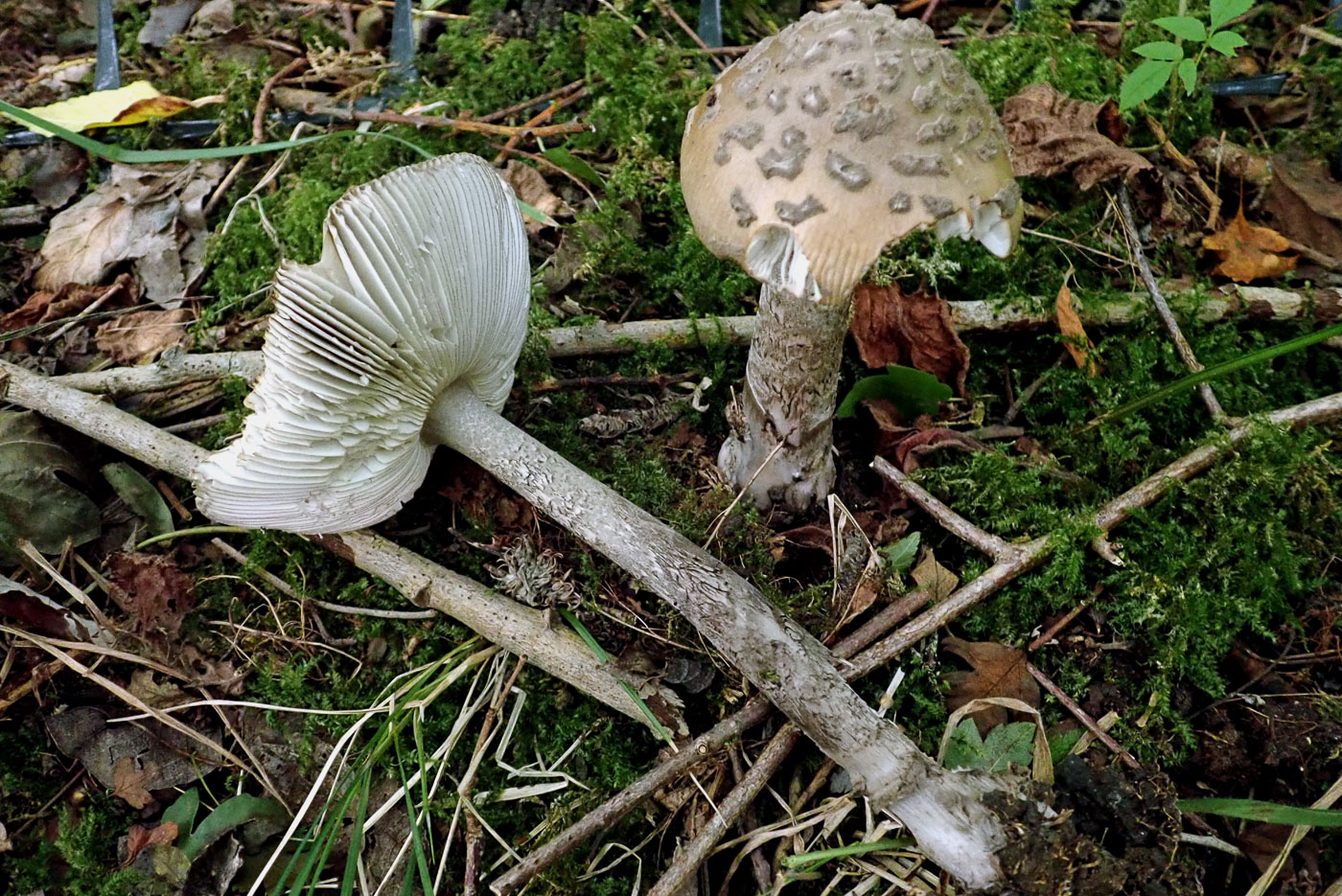
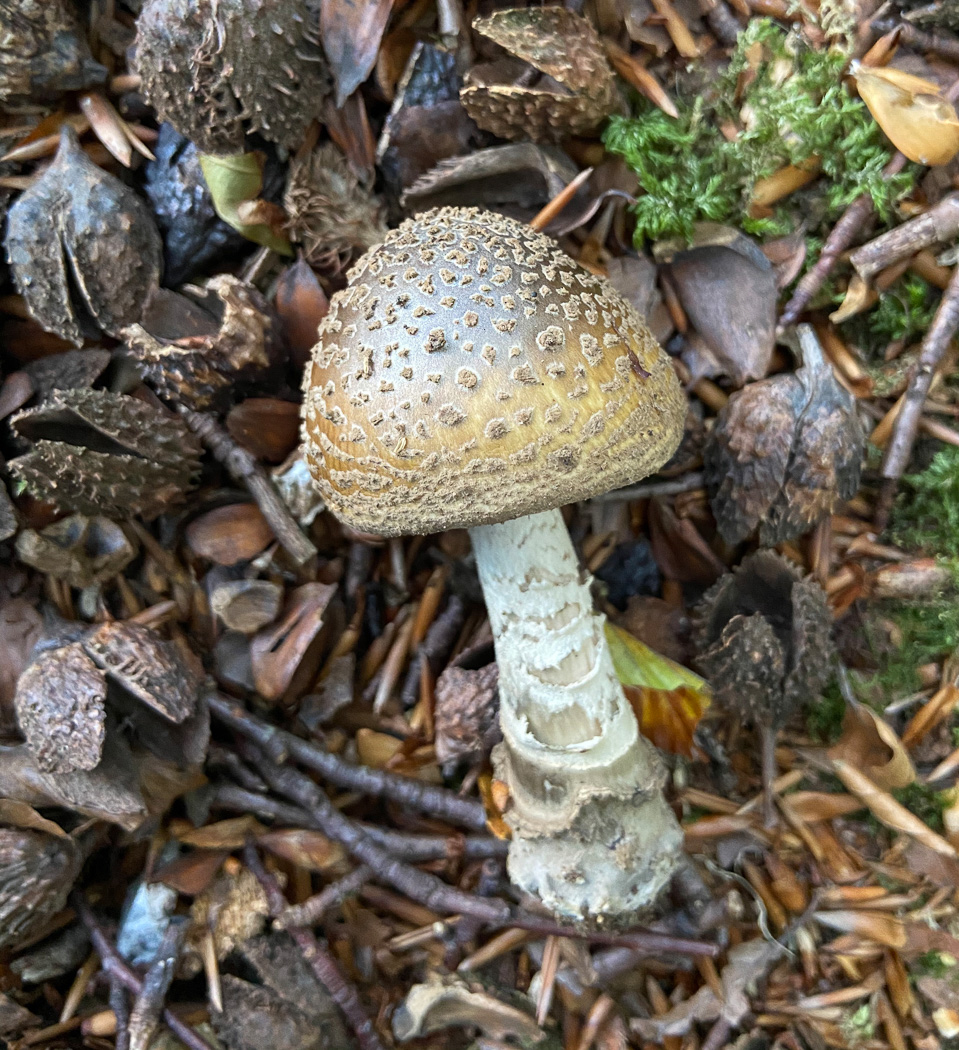
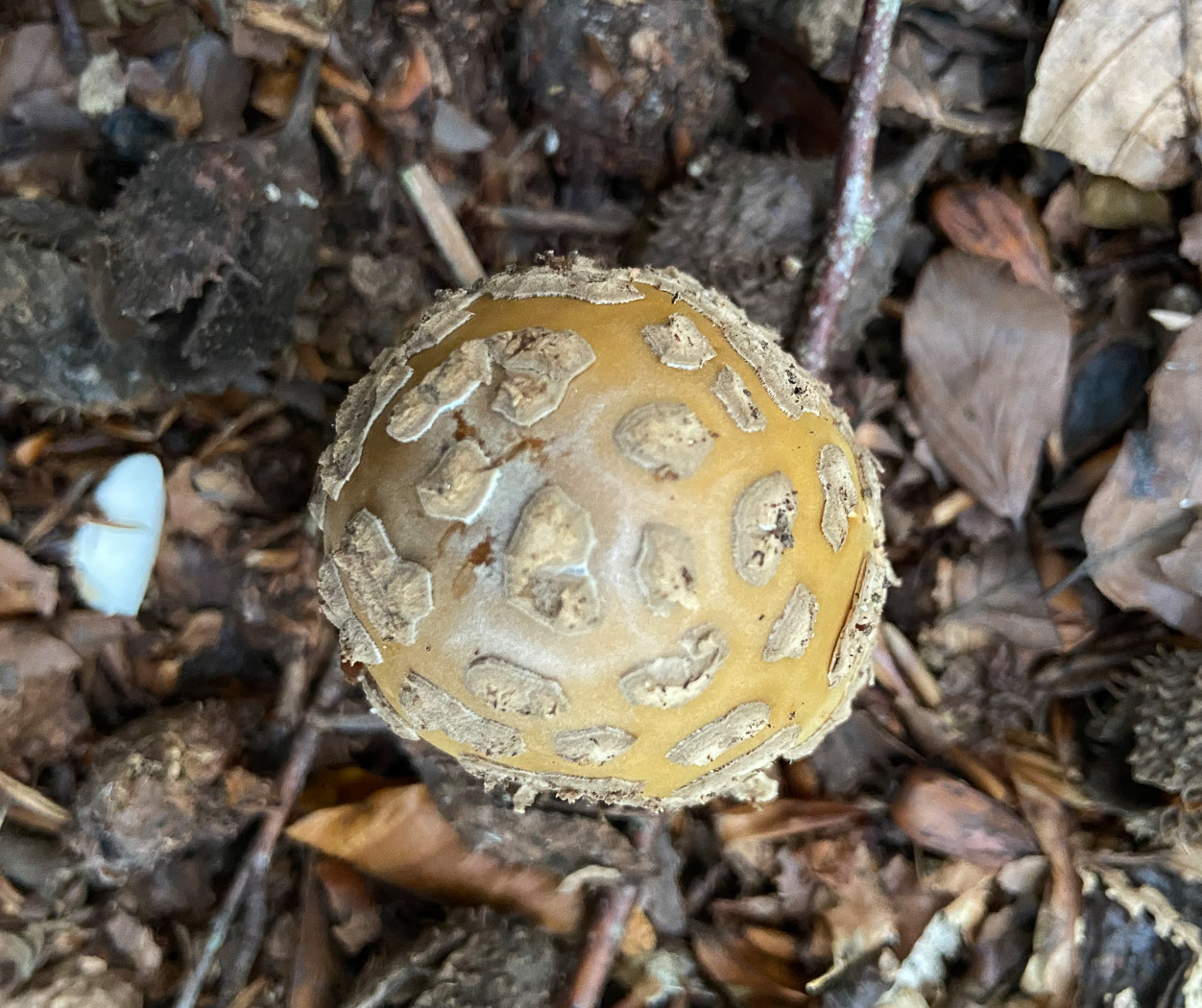 |
September 13th Amanita ceciliae (Snakeskin Grisette)
This quite uncommon Amanita has turned up in several sites this week though often as singletons. Here we have a doubleton from Rushbeds Wood growing under Hazel (Penny Cullington, Sept 10th) and a singleton from Bradenham Wood under Beech (Sarah Ebdon, Sept 13th). This is one of a group of Amanita species which lack a ring and have crumbly easily collapsible volvas at the stem base. A. ceciliae has notably large dark greyish veil patches on the cap, the grey tones also developing on the lower stem and volva as it matures.
|
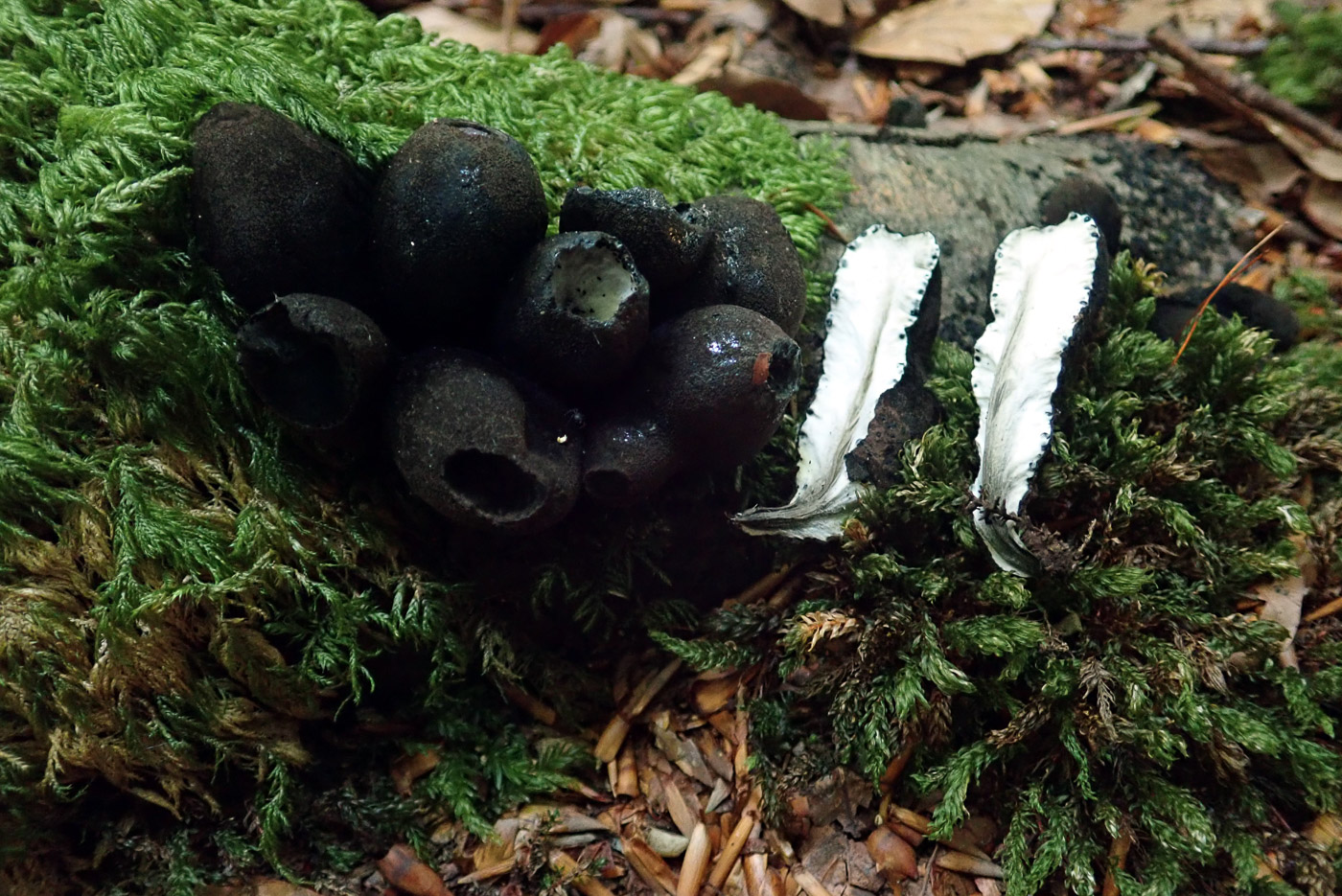 |
September 13th Xylaria polymorpha (Dead Man's Fingers)
Penny Cullington found this young collection of fruit bodies growing on fallen Beech at Pullingshill Wood. A common ascomycete, though very different from the softer fleshed cup fungi which are also in this Order of fungi, the solid black fruit bodies are covered with tiny ostioles (holes) through which the spores are forcibly expelled. The white structure within can be seen on the right hand fruit body which has been split open.
|
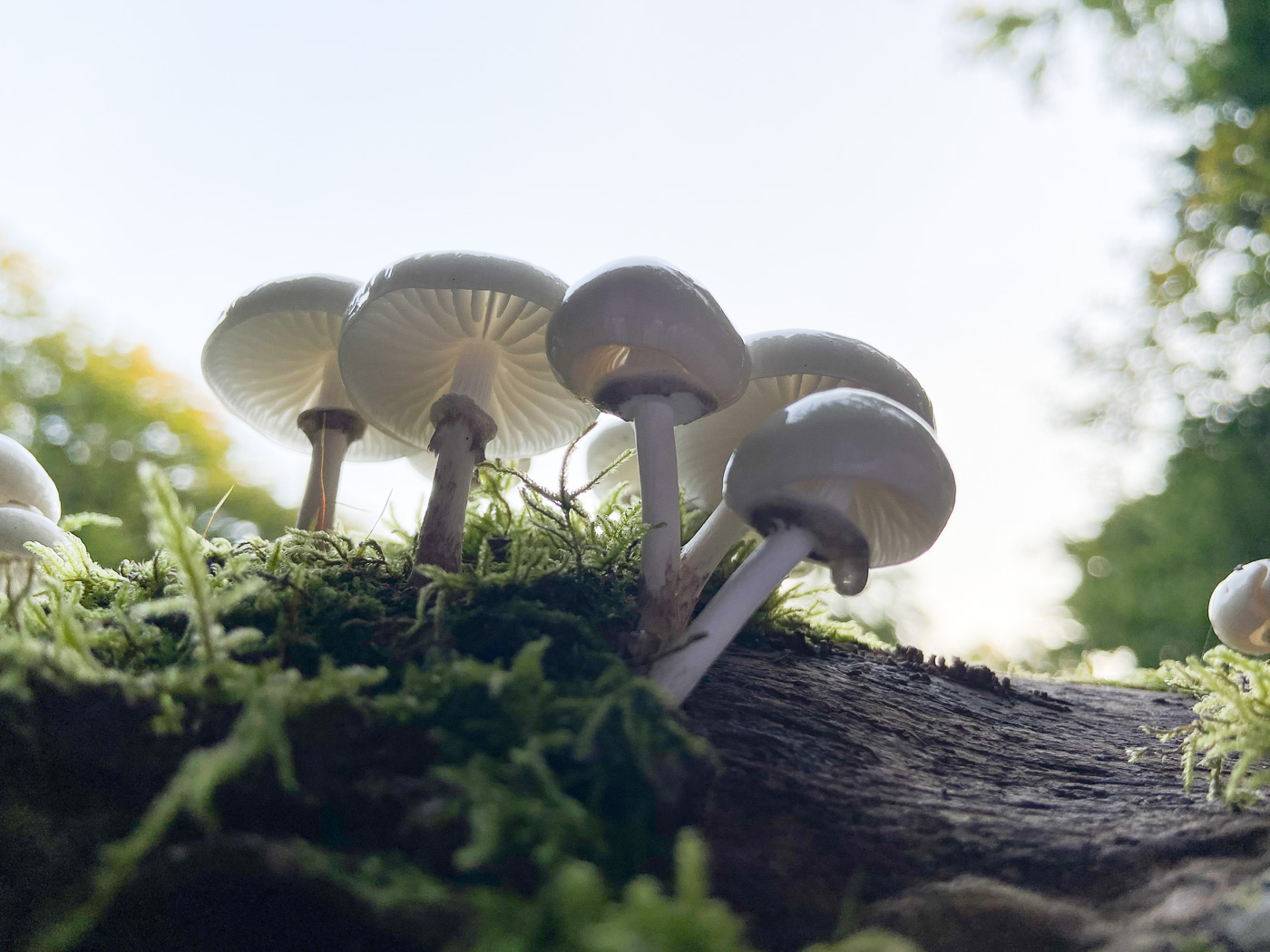
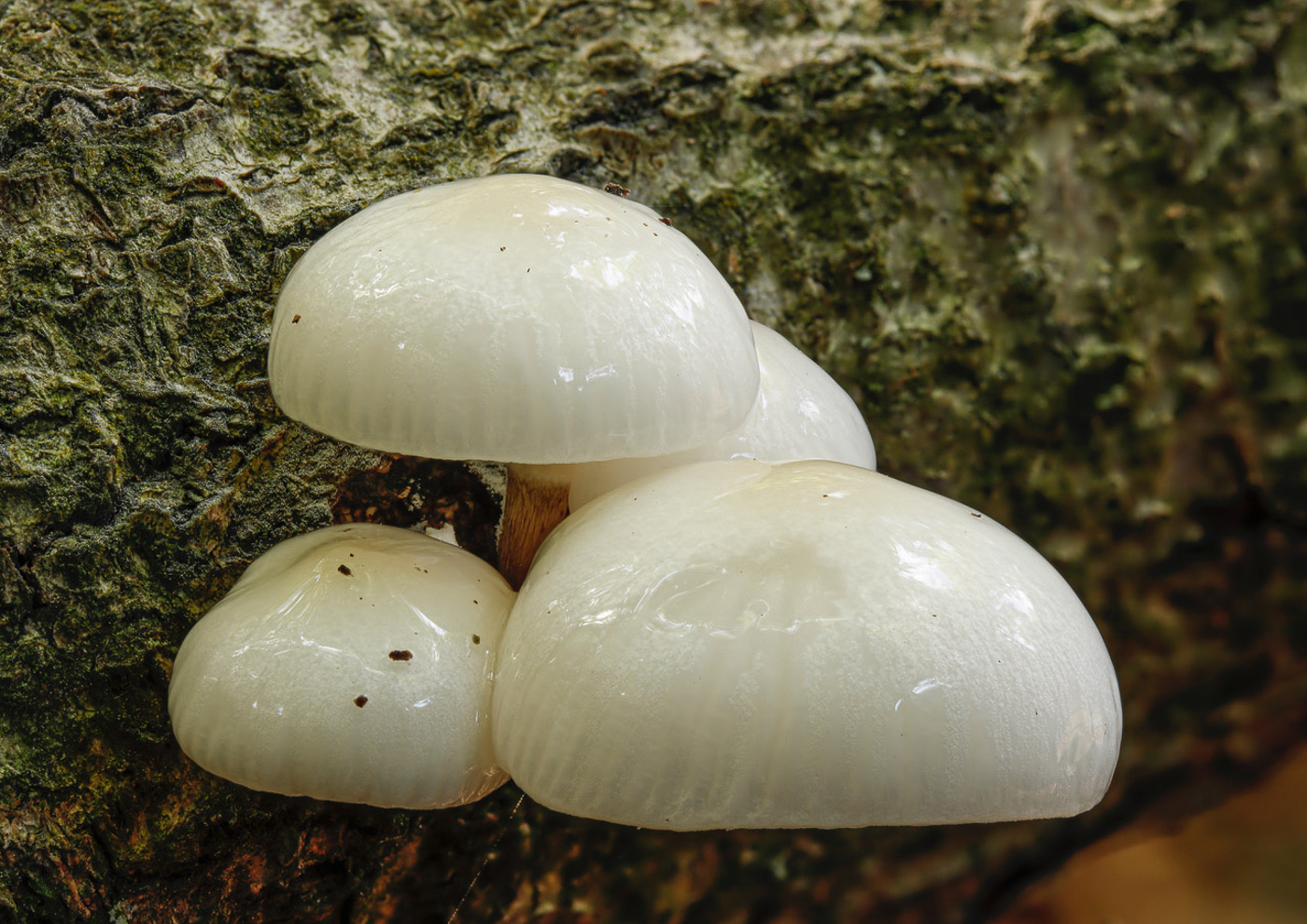 |
September 13th Mucidula mucida (Porcelain Fungus)
This beautiful and common species (the genus name of which has only recently changed from Oudemansiella) was found on Beech in Naphill Common independently by Sarah Ebdon and Paul Goby. Sarah's photo shows how when viewed from below the cap is almost translucent (like porcelain), the gills are widely spaced and the ring is grey. Paul's photo shows another key feature: the slimy coating on the cap. It occurs on both fallen and living Beech, often way up in the canopy, and can cause problems with identification when mature specimens fall from a height to the ground and thus appear to be ground dwelling rather than wood dwelling.
|
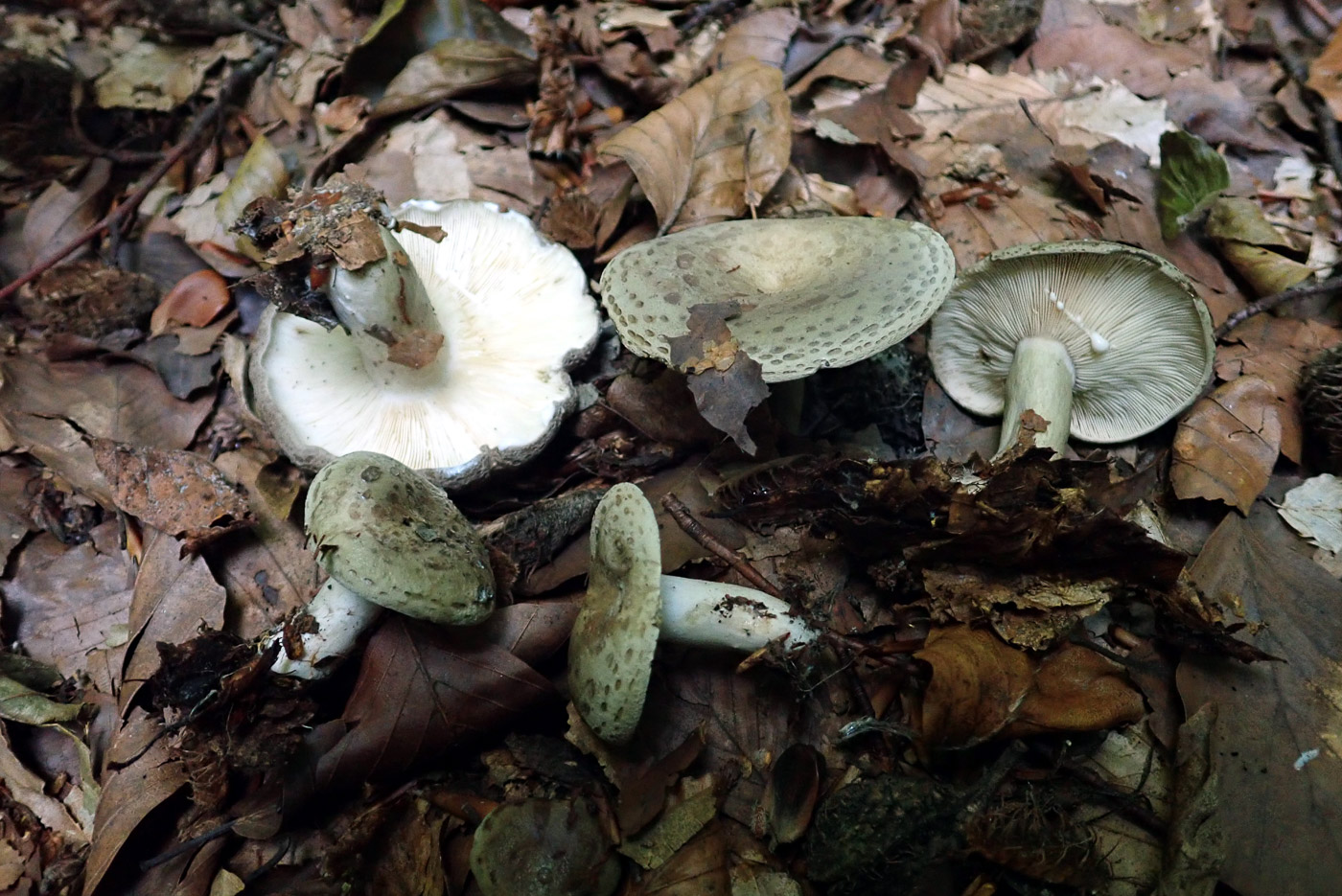 |
September 13th Lactarius blennius (Beech Milkcap)
This collection was found by Penny Cullington under Beech in Pullingshill Wood. One of our commonest milkcaps and host specific to Beech, it is easy to recognise if one notes the darker droplet-like blotches on the pale olive grey background - however, they are not always as obvious as in these specimens. Note also the cream gills with (usually) copious milk which turns greenish olive as it dries - this can take anything from a few minutes to half an hour.
|
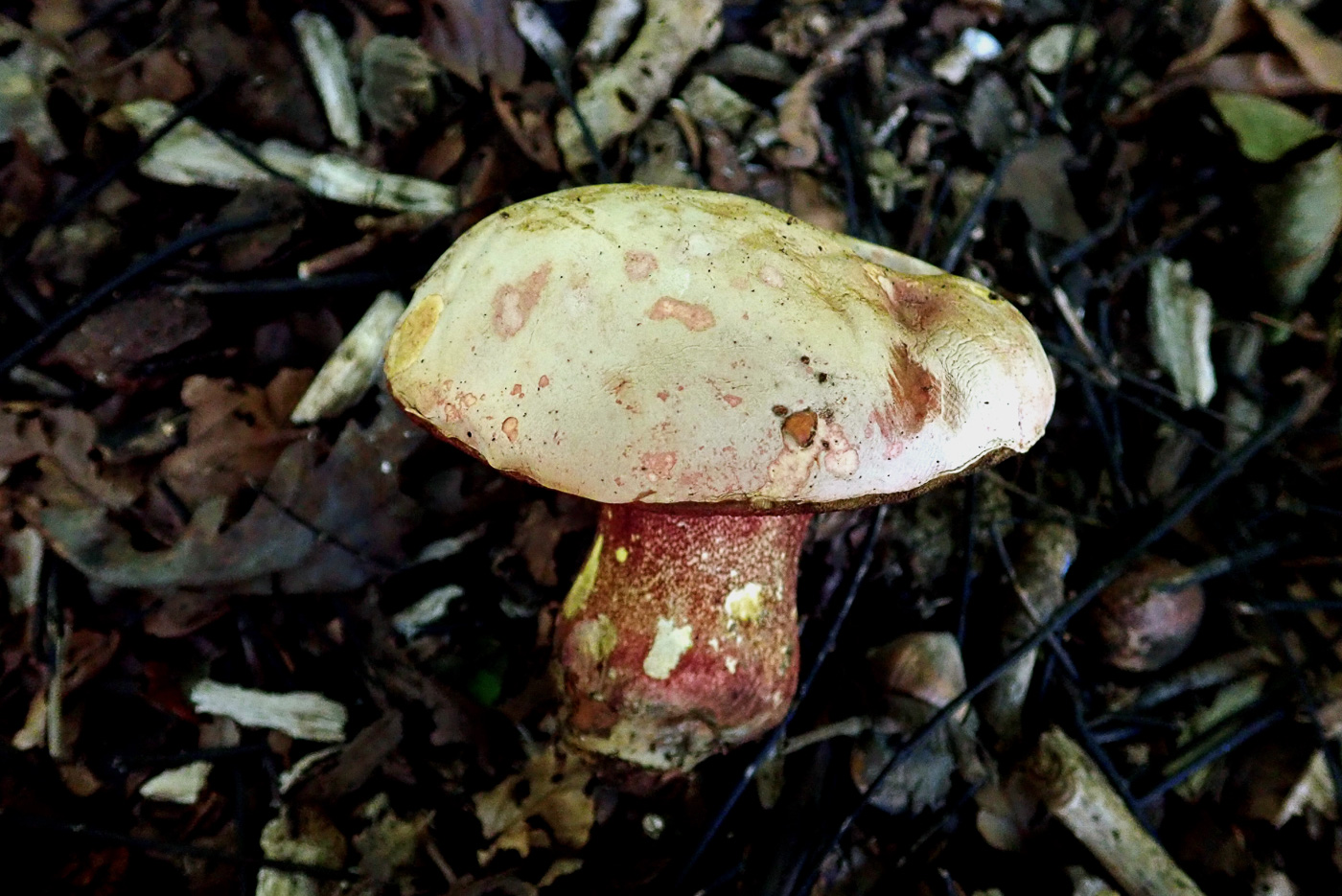
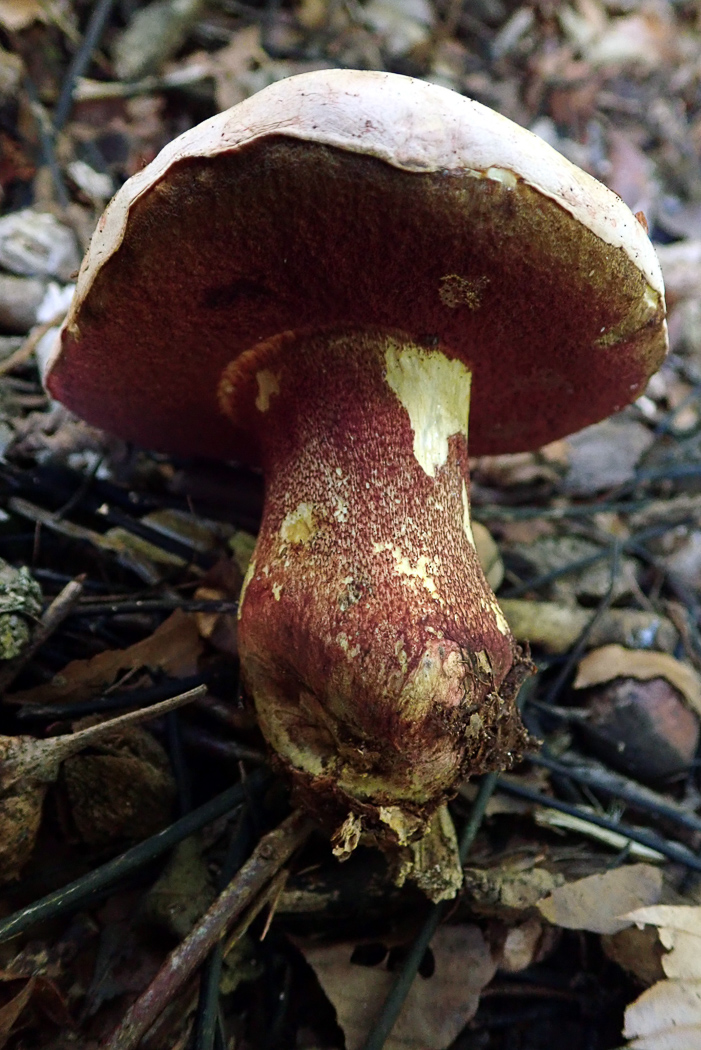 |
September 13th Rubroboletus legaliae (no common name)
A rare species of bolete (previously in Boletus), this was found by Richard Fortey under Beech / Oak in Pullingshill Wood, then shown to Penny Cullington for whom it was a new species - new to Bucks. As the Latin name suggests, this is another bolete having unusually coloured pores and is very similar to (possibly sometimes mistaken for) the even rarer Rubroboletus satanas (Devil's Bolete). The pale ivory cap tends to develop pink tones (these became apparent after collection) - not present in R. satanas, the gills have orange tones rather than red and the stem is less clavate in shape - prominently clavate in R. satanas.
|
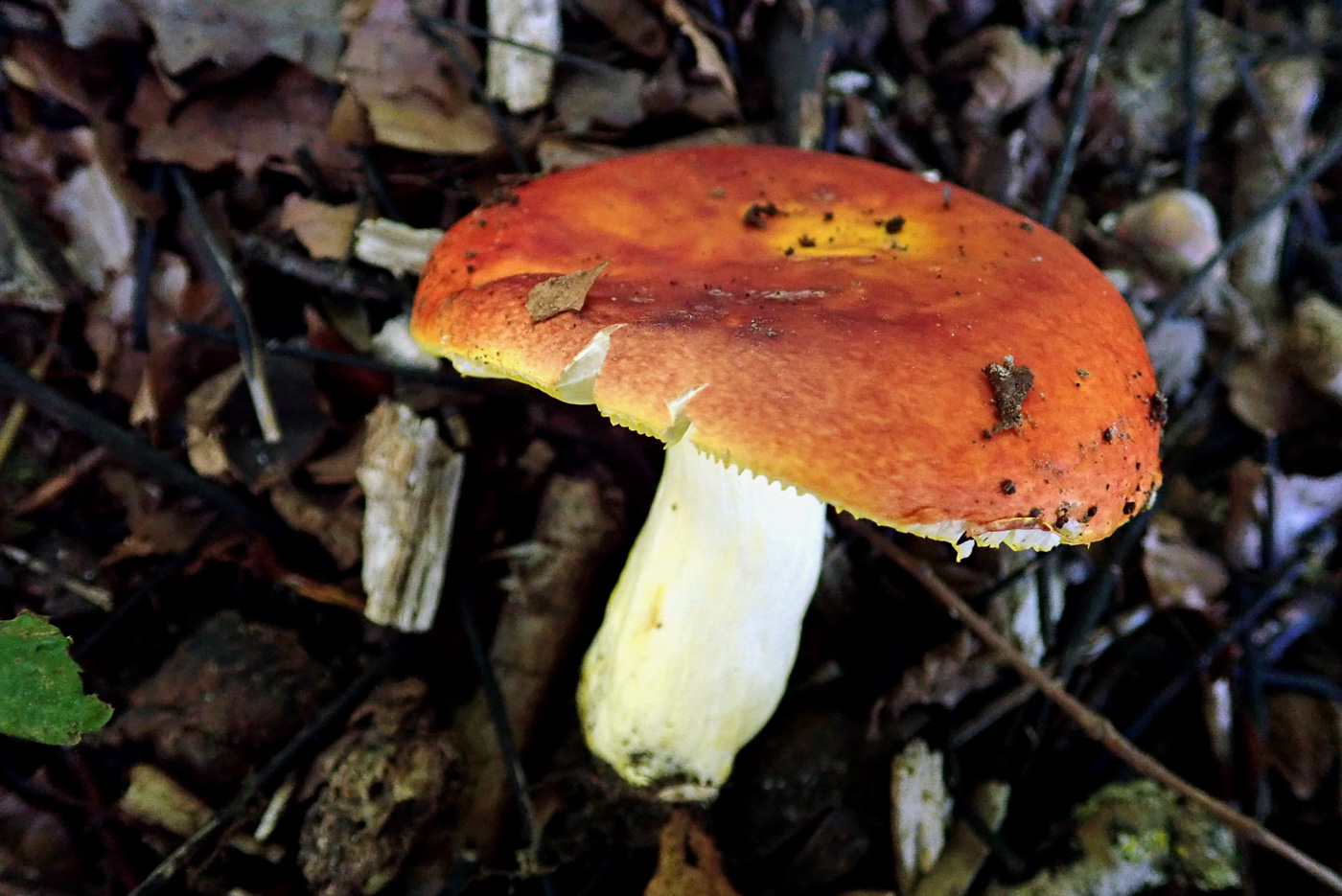
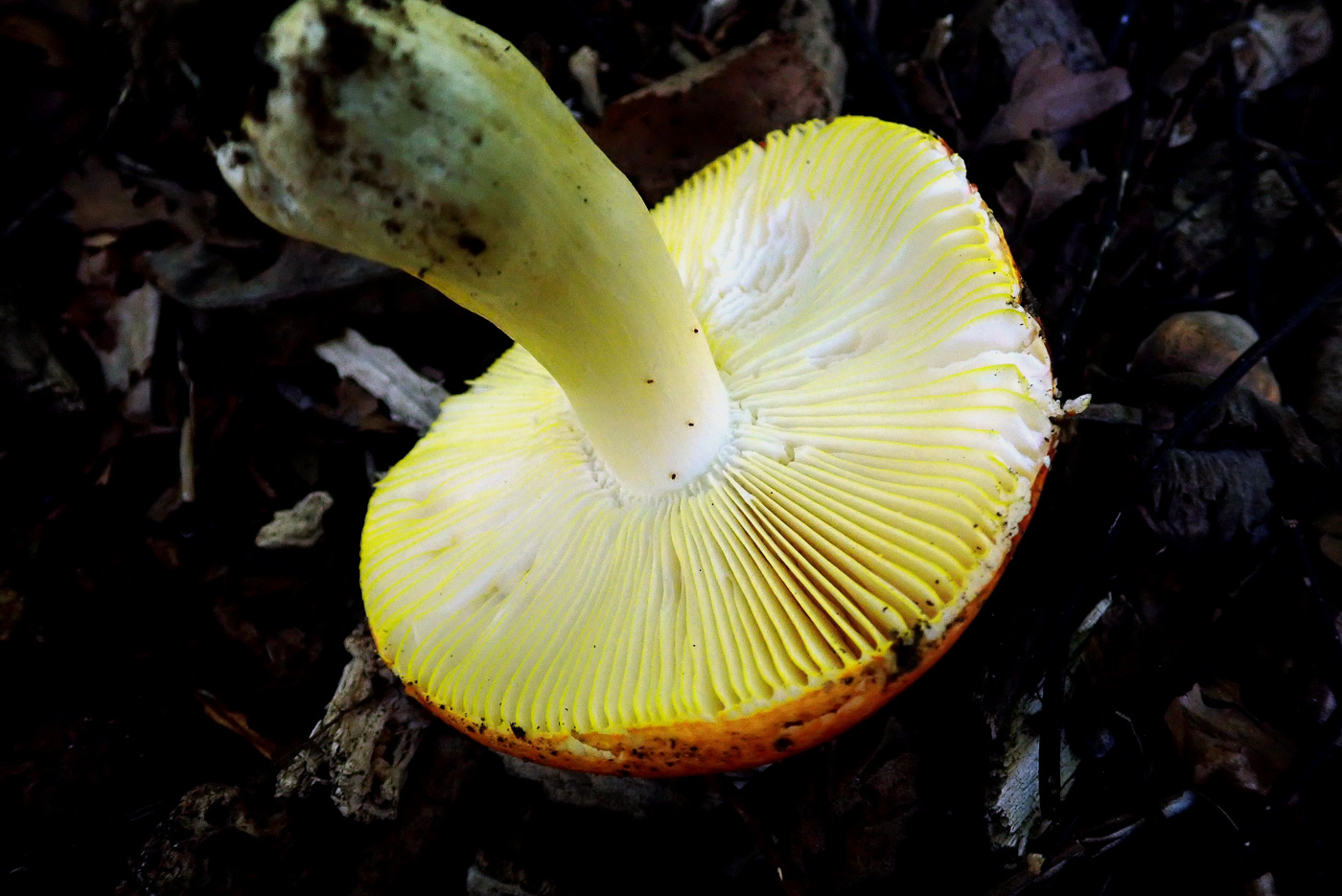 |
September 13th Russula aurea (Gilded Brittlegill)
This rare and stunning Brittlegill, new to Bucks, was found under Beech at Pullingshill Wood by Penny Cullington (for whom it was new). Unmistakeable in the field, the intensely bright cap colour together with gill edges flushed golden yellow (a unique feature in the genus) alert one straight away that this is something unusual. The stem tends to flush yellow also. Sadly there was only one specimen.
|
September 12th 2020
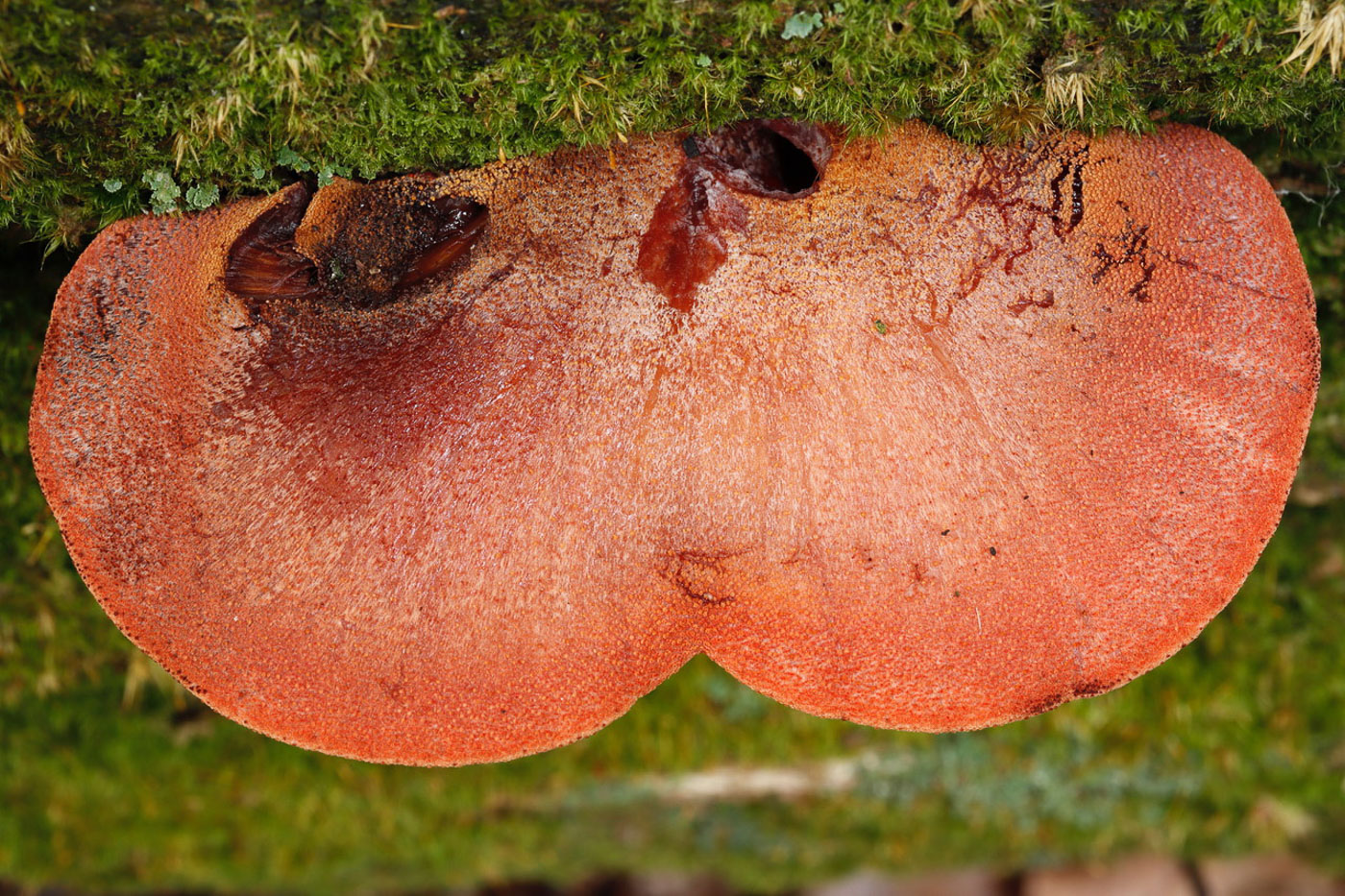
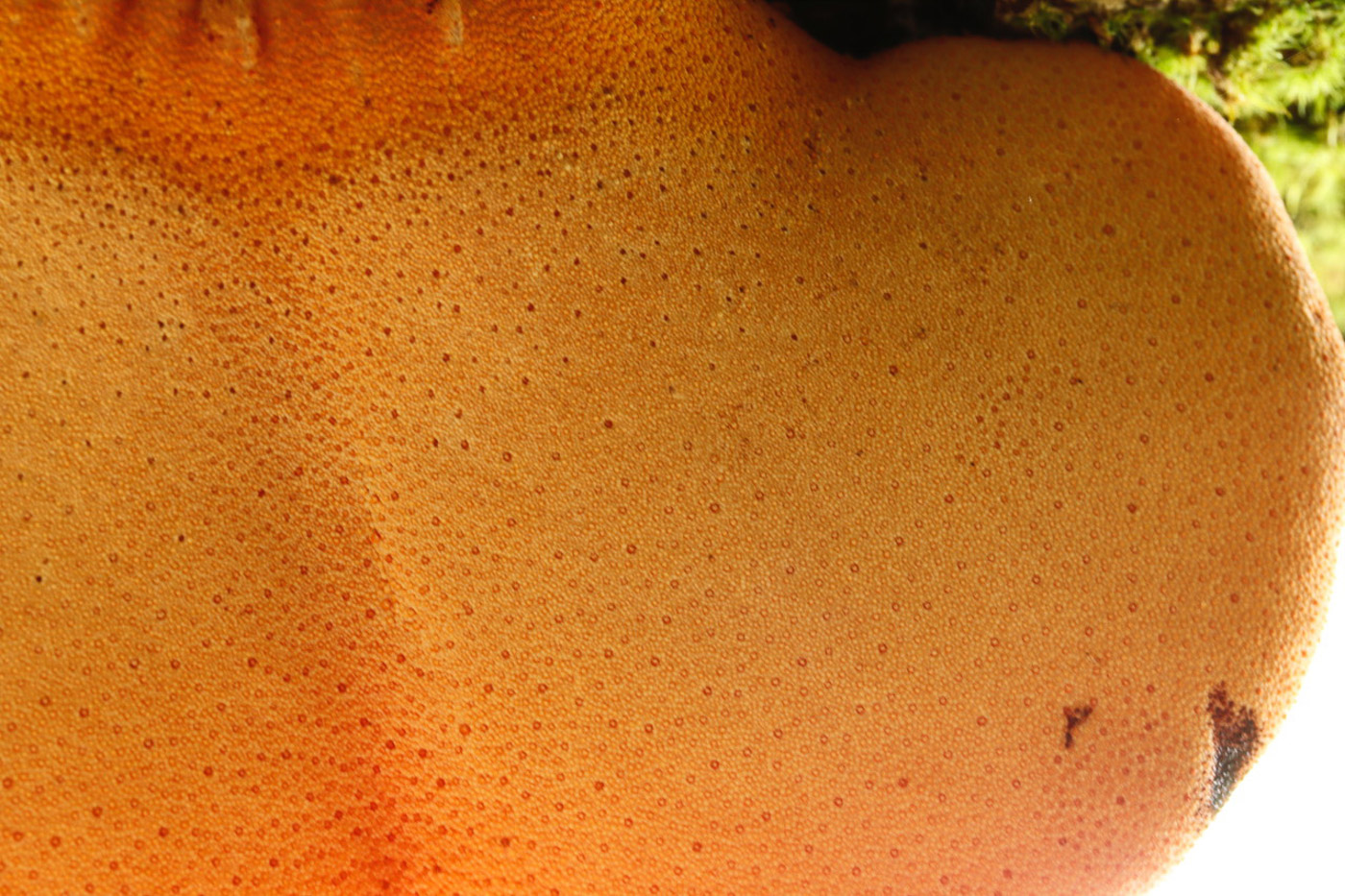 |
September 12th Fistulina hepatica (Beefsteak Fungus)
This unusually double-headed specimen was found on a Beech log in Naphill Common by Paul Goby. Often fruiting at this time, the species is more commonly found on living Oak. The two views seen here were taken from directly above and directly below the specimen, the fine pores visible on the underside being the fertile surface from which the spores drop.
|
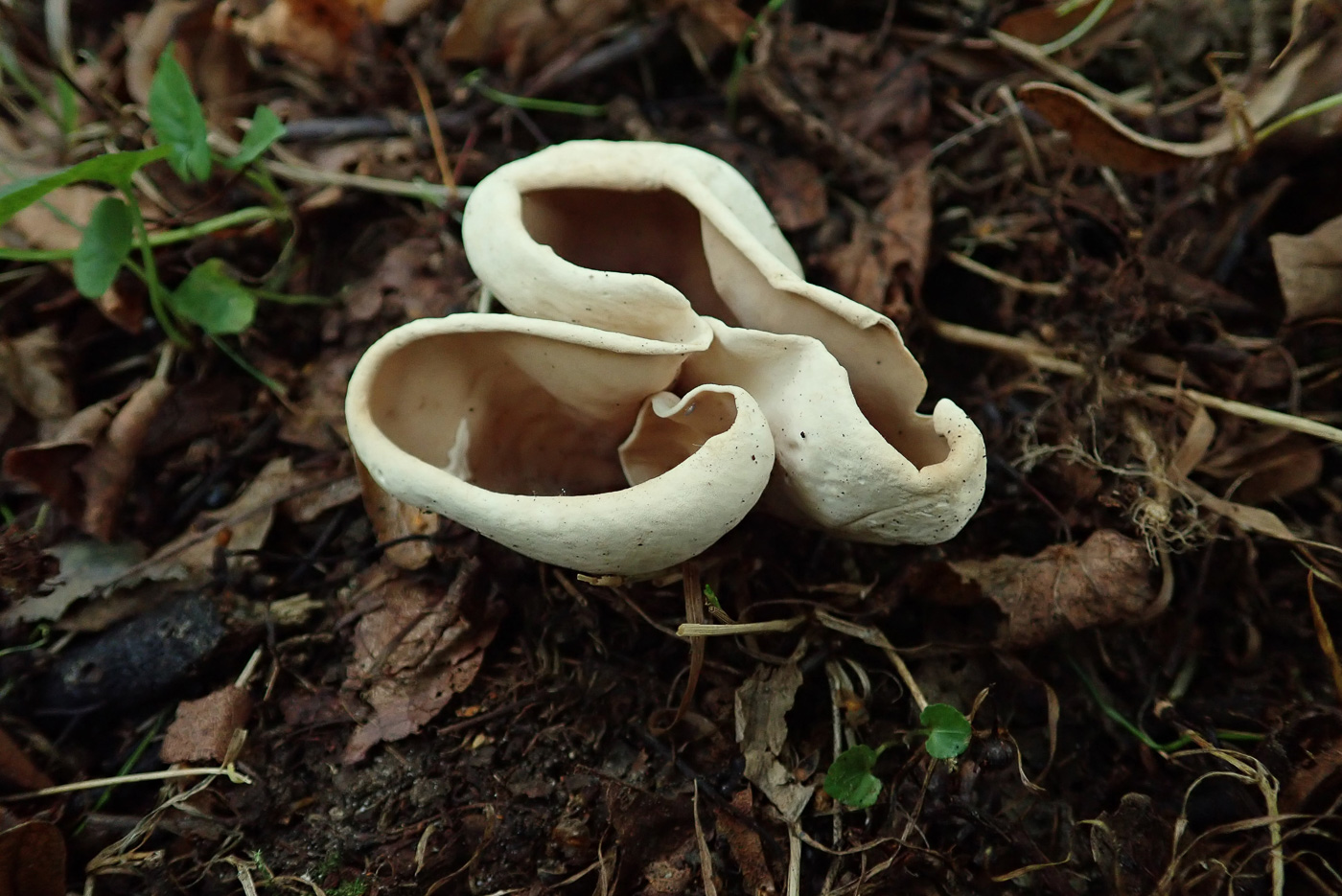 |
September 12th Otidea alutacea (Tan Ear)
Mistaken in the field for a species of Peziza, this collection was found under Lime at Turville Heath by Penny Cullington and the genus was not apparent until examined with a scope.  . As the tell tale field difference between the two genera was not obvious (i.e. the split on one side, missing in Peziza) it was assumed that here were two adjacent specimens of Peziza. Not so. Spore shape, size and smoothness together with other microscopic clues eliminated Peziza, and on closer inspection the somewhat obscure split in fact can be seen. . As the tell tale field difference between the two genera was not obvious (i.e. the split on one side, missing in Peziza) it was assumed that here were two adjacent specimens of Peziza. Not so. Spore shape, size and smoothness together with other microscopic clues eliminated Peziza, and on closer inspection the somewhat obscure split in fact can be seen.
|
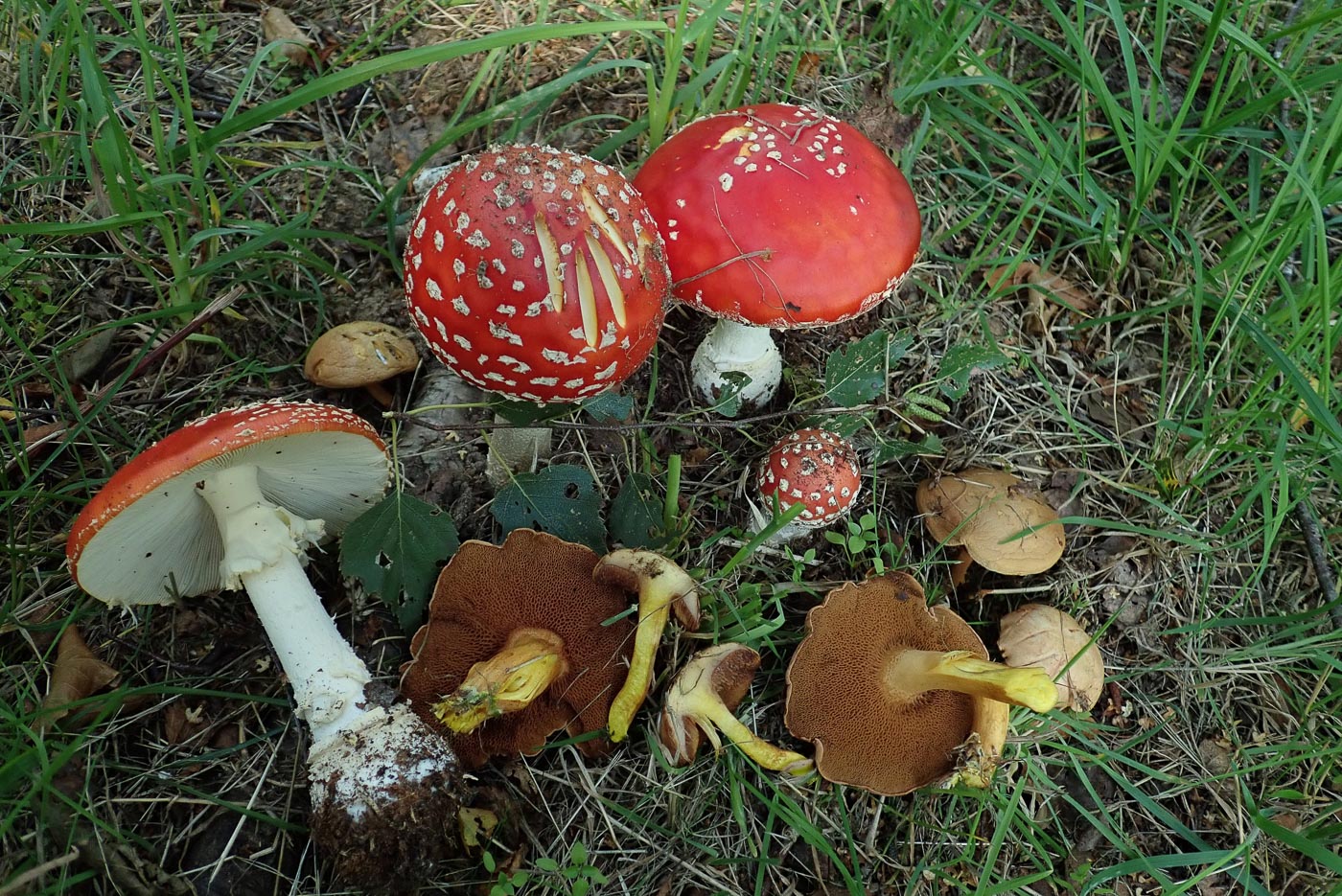 |
September 12th Amanita muscaria (Fly Agaric) with Chalciporus piperatus (Peppery Bolete)
These two species were found fruiting together under Birch at Turville Heath by Penny Cullington. An easily recognisable Amanita (and one of our most familiar fungi) it grows under Birch (and very occasionally under other trees) and is quite often found close together with this particular bolete as here. However, C. piperatus can also be found fruiting separately under other trees. Note its soft brown cap, cinnamon brown pores and bright lemon flesh in the lower stem - all good field characters. Amanita muscaria is DANGEROUSLY POISONOUS
.
|
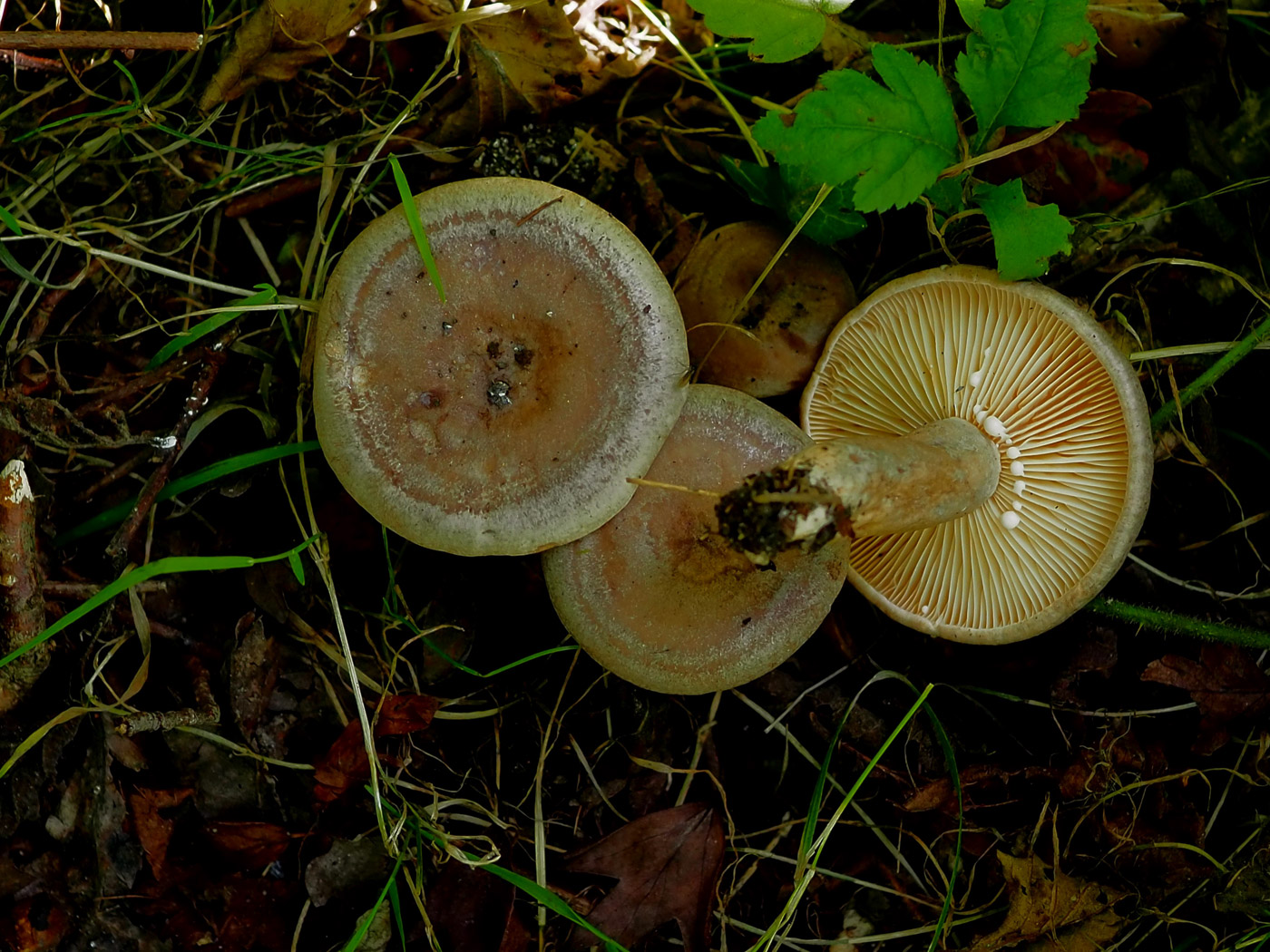 |
September 12th Lactarius quietus (Oak Bug Milkcap)
One of our commonest Milkcaps, this species was found by John Catterson fruiting under Oak, its host tree, at The Common, Cadmore End. Once you've noted that it's a Milkcap in the field by the presence of milk when damaged, the zoning markings on the cap, its distinctive oily rubbery smell and occurrence only under Oak are all good characters to separate the species from the many others in the genus, all of which are found under trees. The smell is one worth getting to know as it occurs not just in other Milkcaps but also in other fungi and is thus used in descriptions as the 'quietus smell'.
|
September 11th 2020
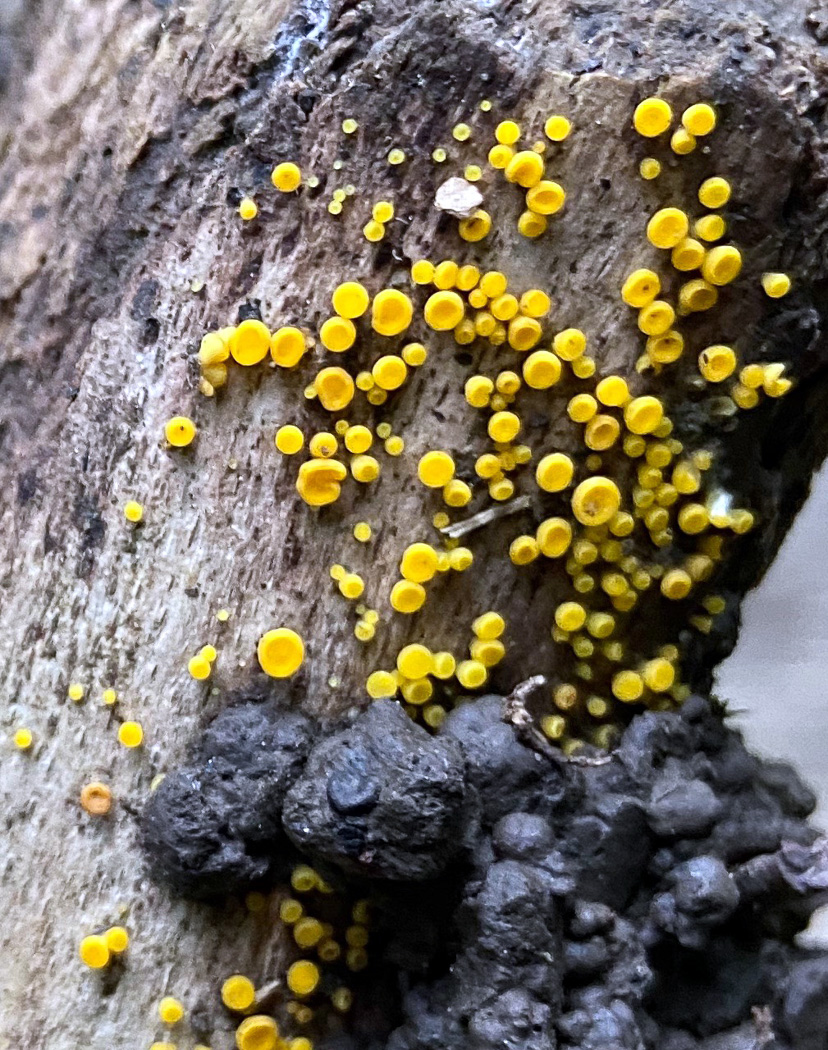 |
September 11th Bisporella citrina (Lemon Disco)
Sarah Ebdon found this colony of tiny cups on rotting fallen deciduous wood in Kings Wood, Tylers Green. Quite a common ascomycete, each cup is no more than 3 mm across but despite its size, because of its bright colour and habit of forming large closely-knit clusters it it often easy to spot from a distance.
|
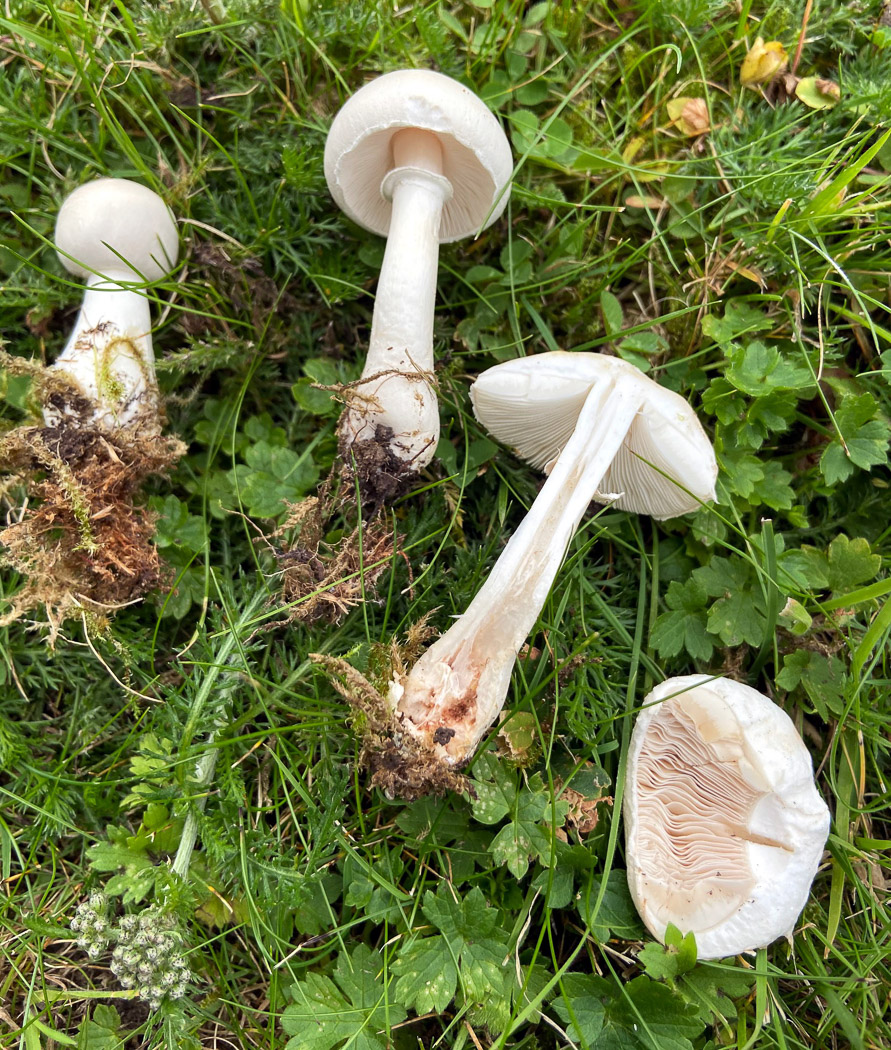 |
September 11th Leucoagaricus leucothites (White Dapperling)
This collection was found on the lawn of a private garden in Tylers Green by Sarah Ebdon. It is a species easily mistaken for an Agaricus until one notes that the gills remain white or palest pink in age whereas the gills in Agaricus turn gradually darker as it matures and end up purple-black. One could also mistake it for an Amanita with its white free gills and ringed stem having a slightly swollen base. However, the white capped species of Amanita all have a distinct volva with a rim, not present here, also the ring on the Leucoagaricus is mobile (i.e. can be moved up or down), not so in Amanita. This is a grassland species (also unlike Amanita), in some years quite common, in others much less so.
|
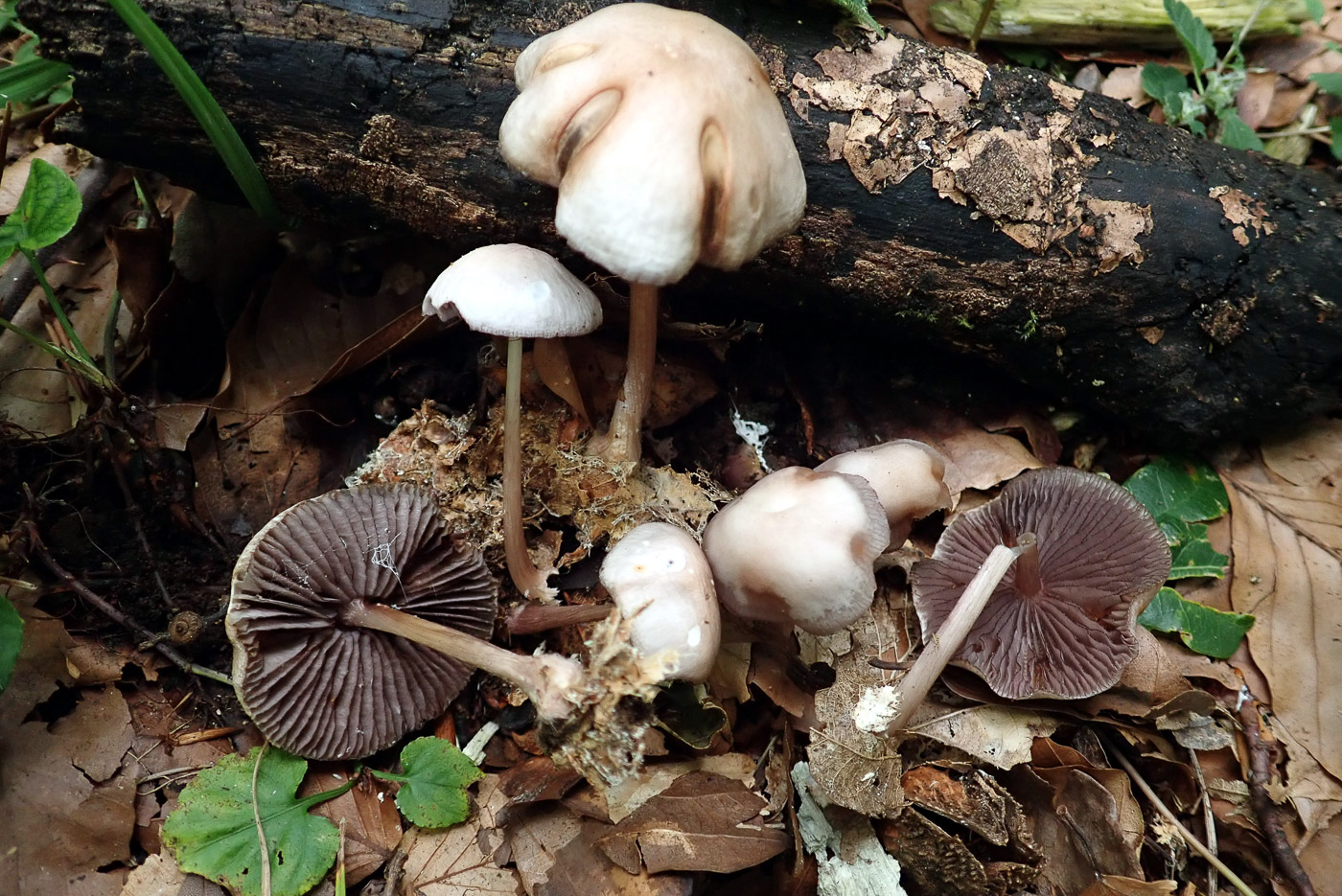
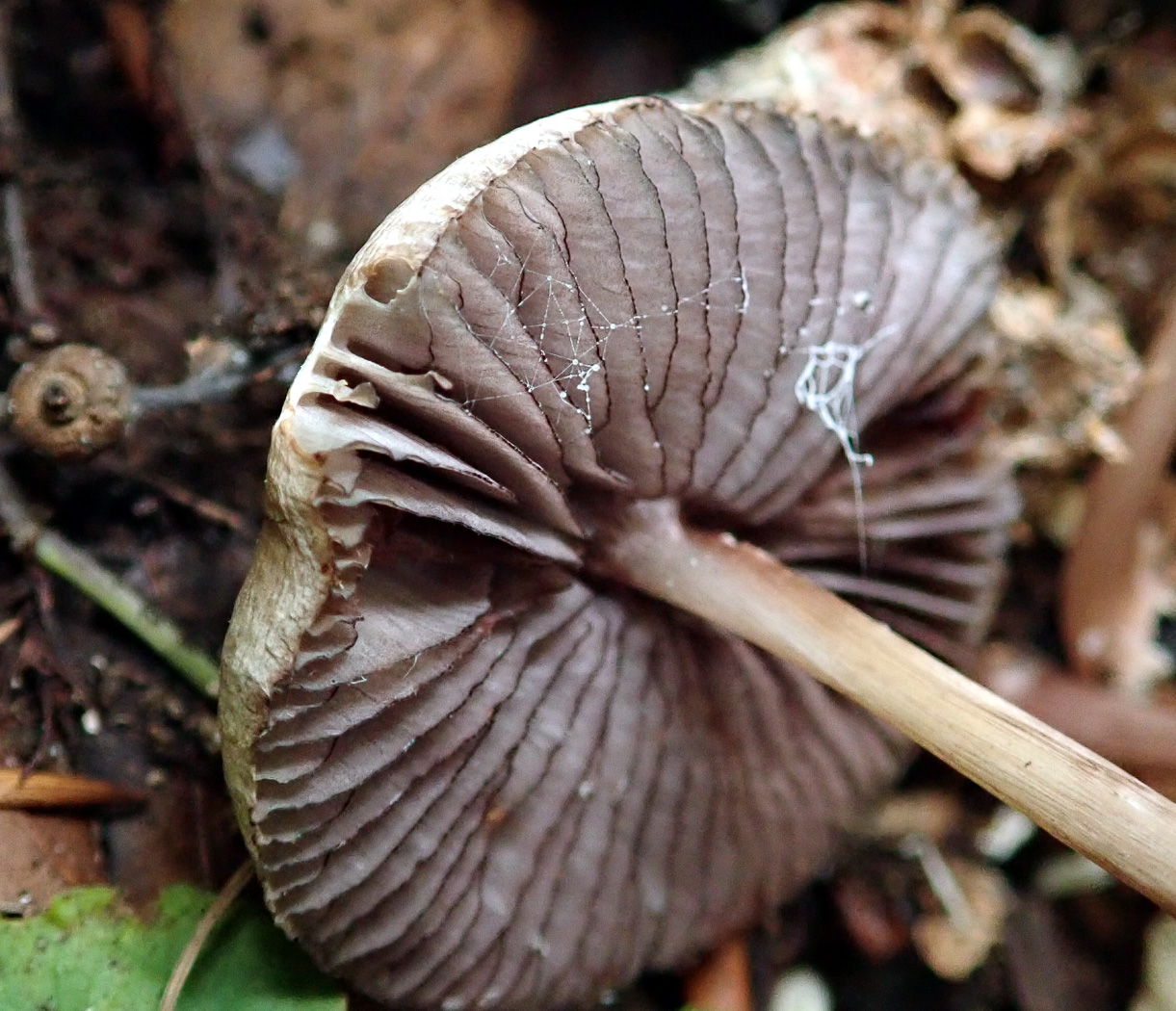 |
September 11th Mycena pelianthina (Blackedge Bonnet)
A somewhat nondescript and quite common species, this Bonnet has one redeeming and unique feature visible in the close-up photo: the edges of the gills are lined with (not black but) dark purple. It was found by Penny Cullington in Kingswood, Tylers Green in Beech litter. It is closely related to the even more common M. pura and M. rosea, both of which inhabit the same substrate; all three species have a sharp smell described as similar to that of radish.
|
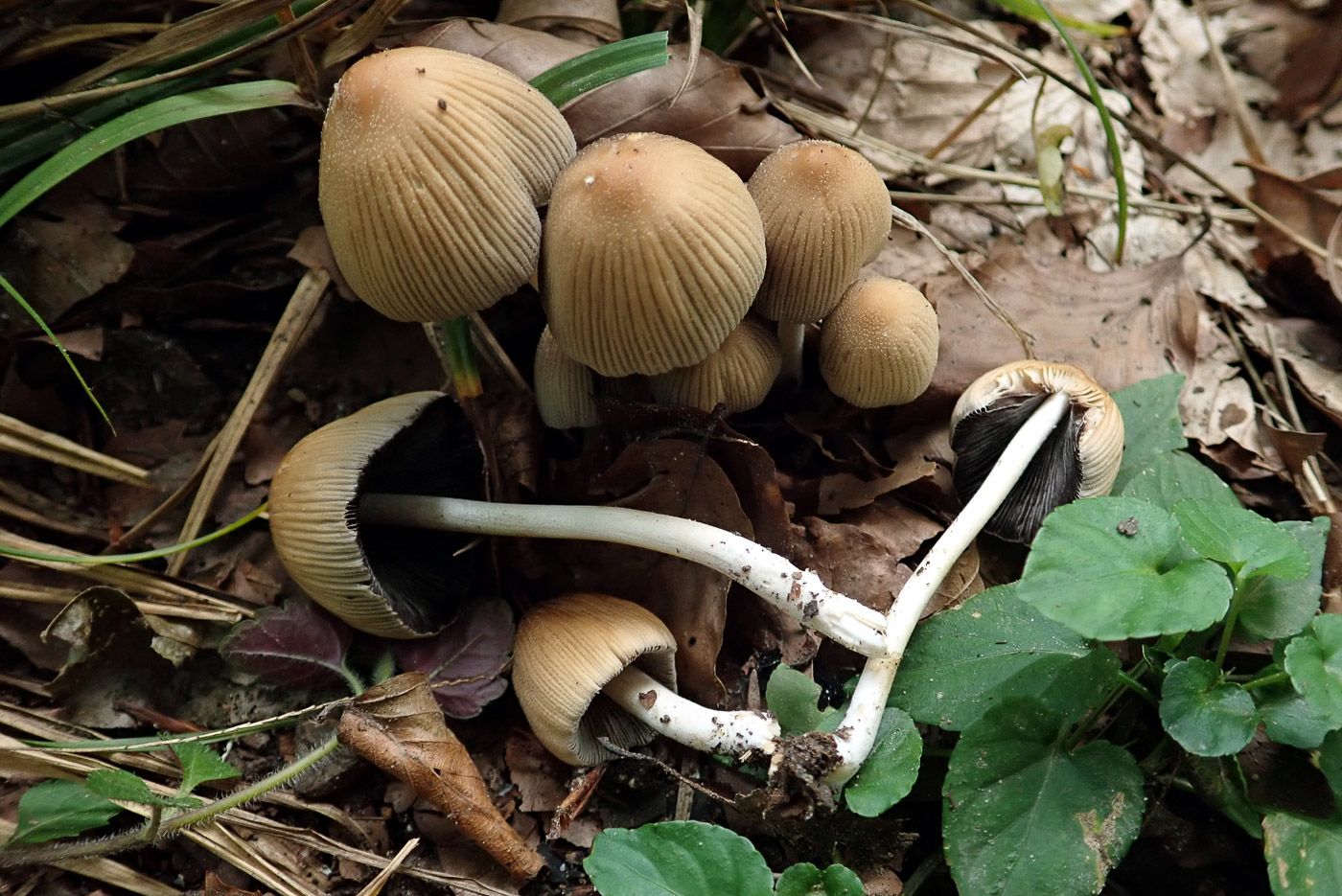
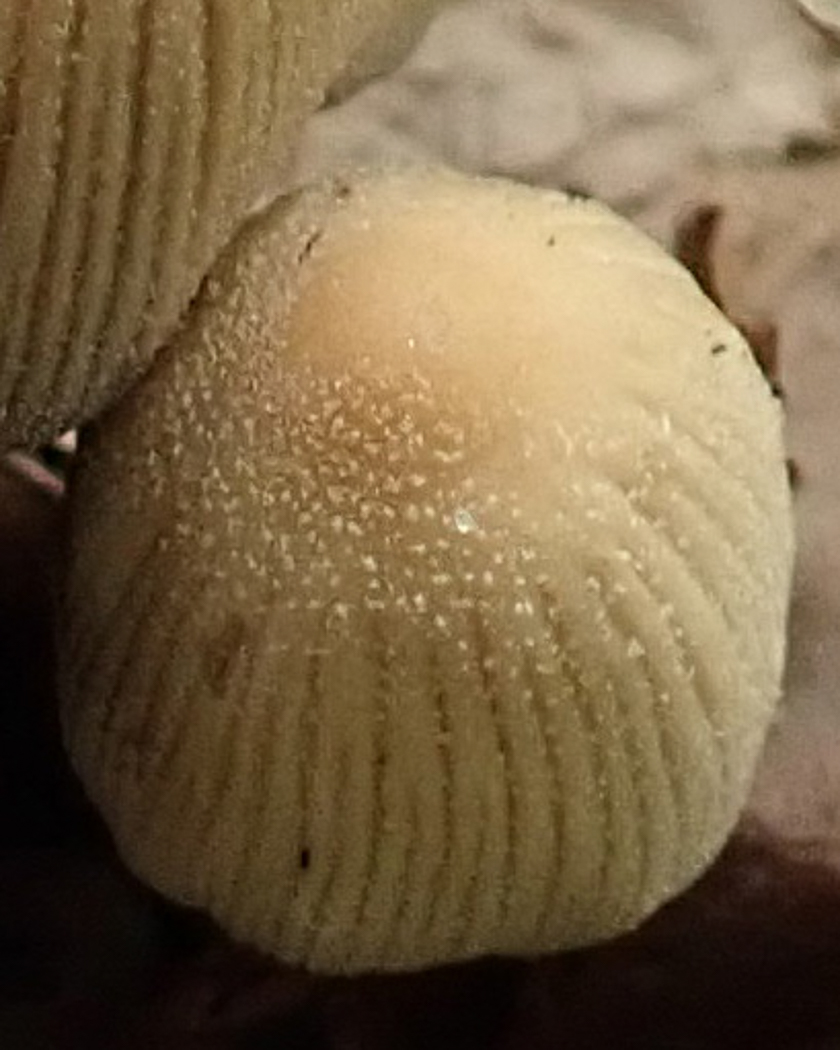 |
September 11th Coprinellus micaceus (Glistening Inkcap)
This was found by Penny Cullington in Kingswood, Tylers Green, and is probably the commonest of all the Inkcaps. It grows on or very near wood or roots and the 'glistening' in the name comes from the tiny flecks of white (called veil) which cover the upper cap surface though rain often washes them off. Note the typical striations (fine grooves) which characterise the cap and the dark gills (less dark in the younger specimens). Like many Inkcaps, if collected in a pot it will turn into a black inky mess in a few hours, a process called deliquessing.
|
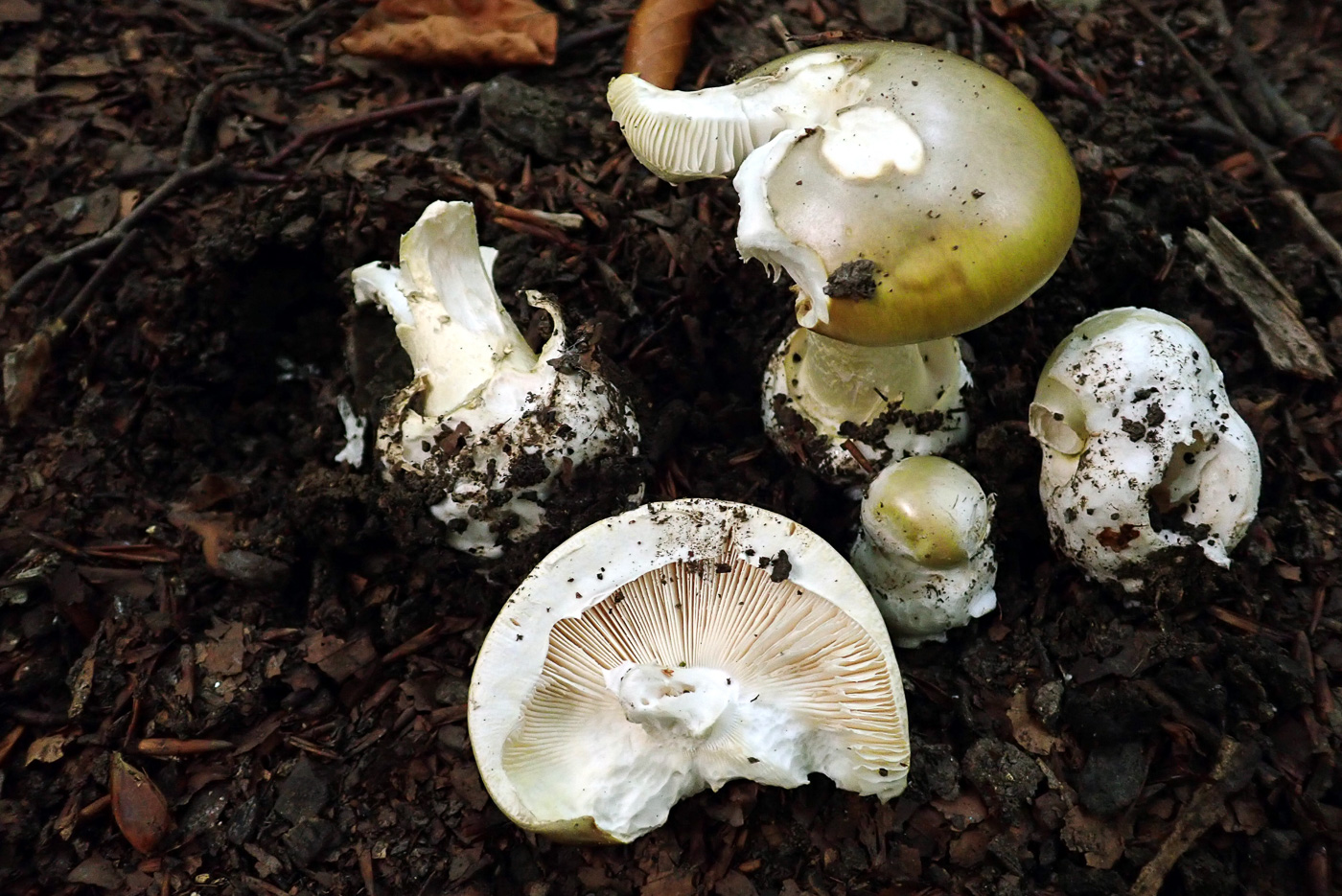 |
September 11th Amanita phalloides (Deathcap)
This collection was found under Beech in Kingswood, Tylers Green by Penny Cullington. As its common name suggests, THIS SPECIES IS DEADLY POISONOUS but is relatively common in our Beechwoods. Some species of Russula can have a similar green cap and white gills but never have a ringed stem or a large volva with a clear gutter around it at the stem base. The ring on the broken specimen in this photo has remained adhered to cap edge rather than to the stem.
|
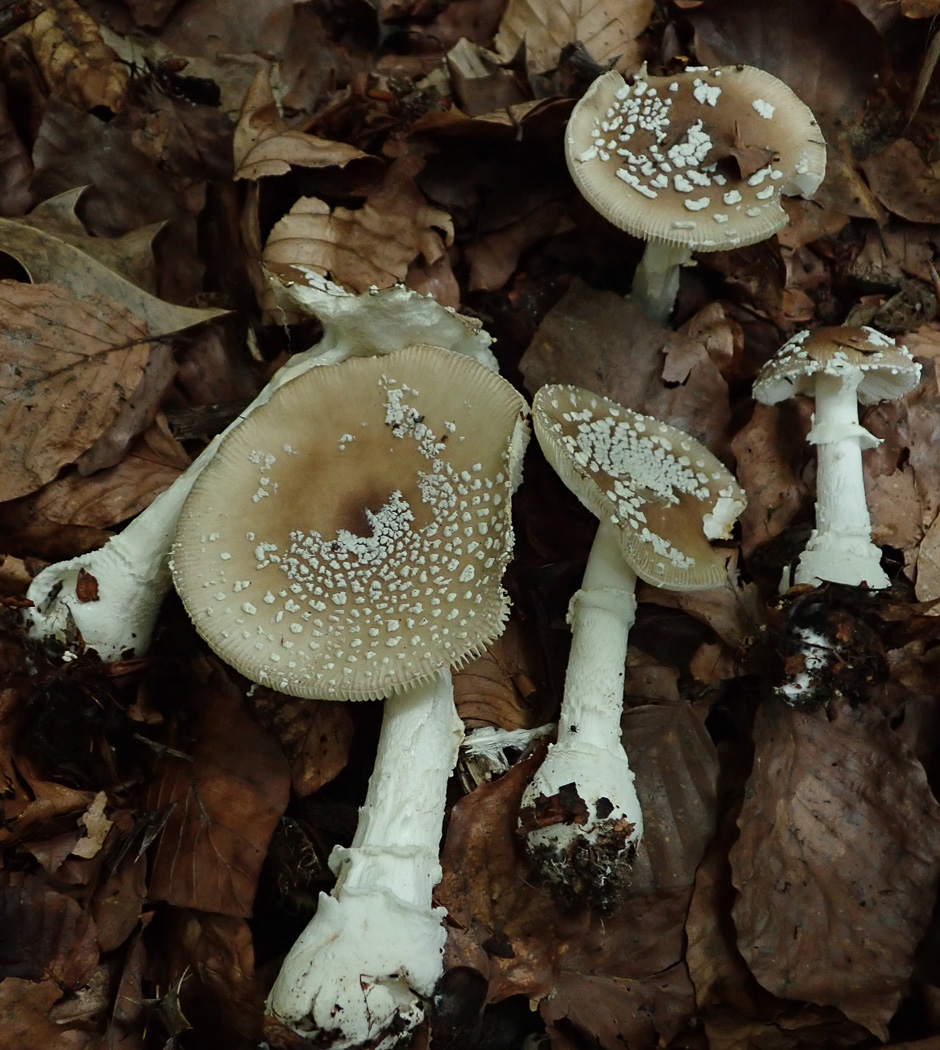 |
September 11th Amanita pantherina (Panthercap)
This collection was found under Beech in Kingswood, Tylers Green by Penny Cullington and later carefully checked to ensure that it was not the common A. excelsa which is often misnamed as this species. Differences to look out for: the cap veil patches are white, not grey as in A. excelsa and more regularly spaced; the ring is lower down the stem and smooth with no striations (fine lines) as in A. excelsa; the flowerpot-like volva at the stem base has a clear rim and above this are some fleecy remains, all features differing from A. excelsa. The clincher: the spores do not stain blue with Melzers reagent but do so in A. excelsa.  THIS SPECIES IS DANGEROUSLY POISONOUS. THIS SPECIES IS DANGEROUSLY POISONOUS.
|
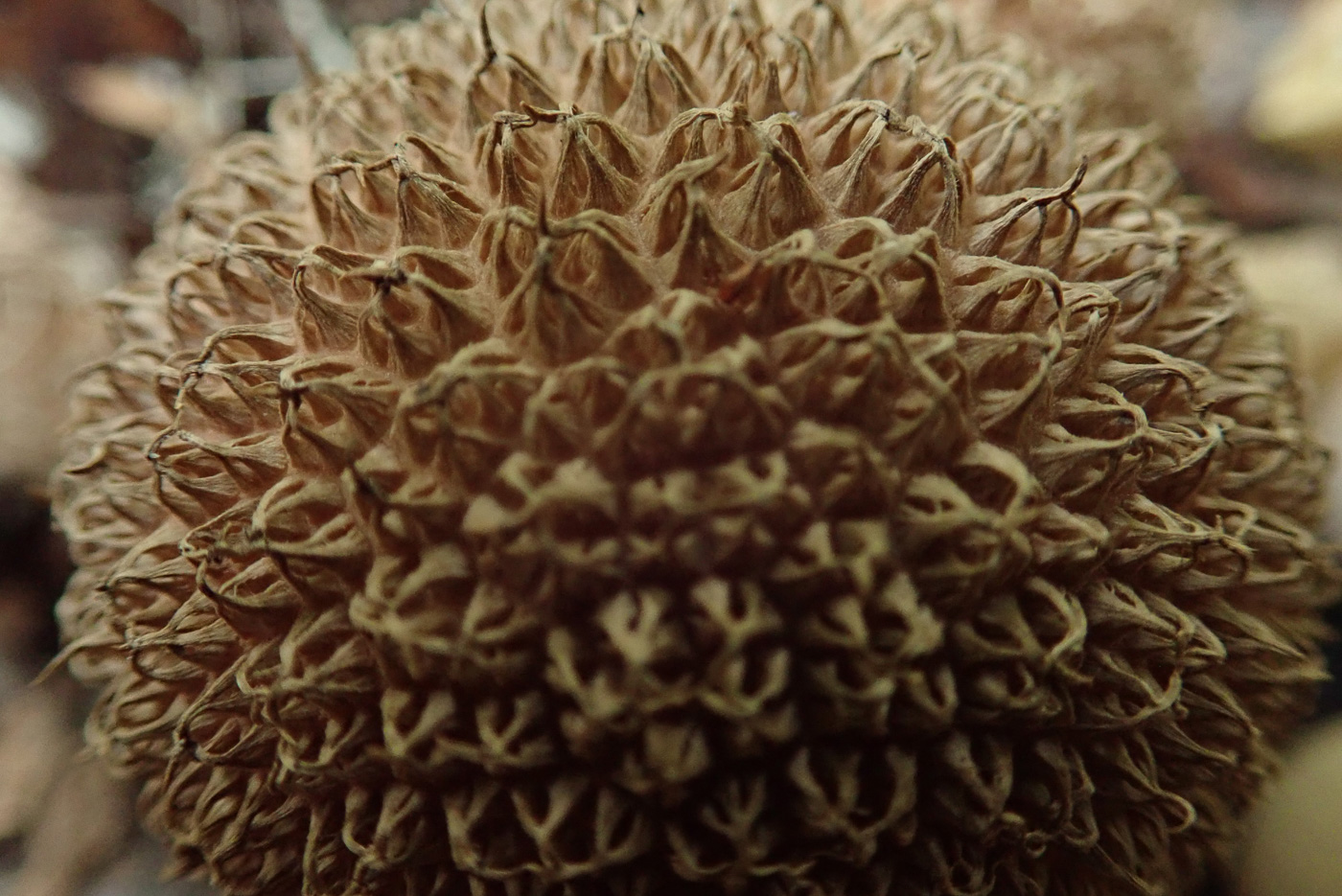
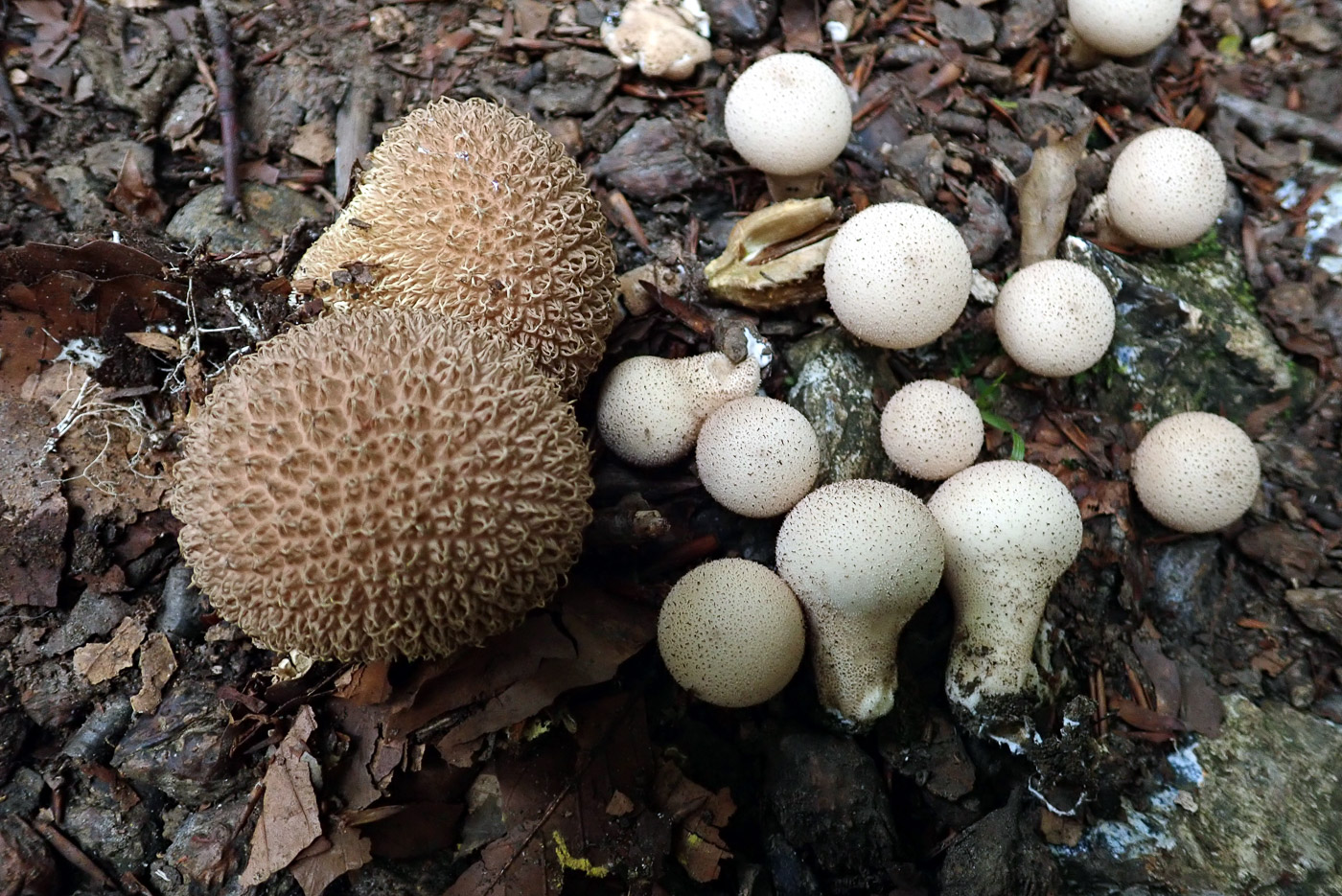
|
September 11th Lycoperdon echinatum (Spiny Puffball) Lycoperdon pyriforme (Stump Puffball)
Two for the price of one here, found by Penny Cullington. They were growing near together in Kingswood, Tylers Green and then placed adjacent to allow comparison. The extremely common Stump Puffball has a smooth pale surface and is usually visibly on wood (though in a path on submerged roots here). The rare Spiny Puffball is larger, darker and has strikingly long spines forming pyramids and grows in deciduous litter (as do two much much more common Puffball species, L. perlatum and L. foetidum, which hopefully will appear and be described in due course).
|
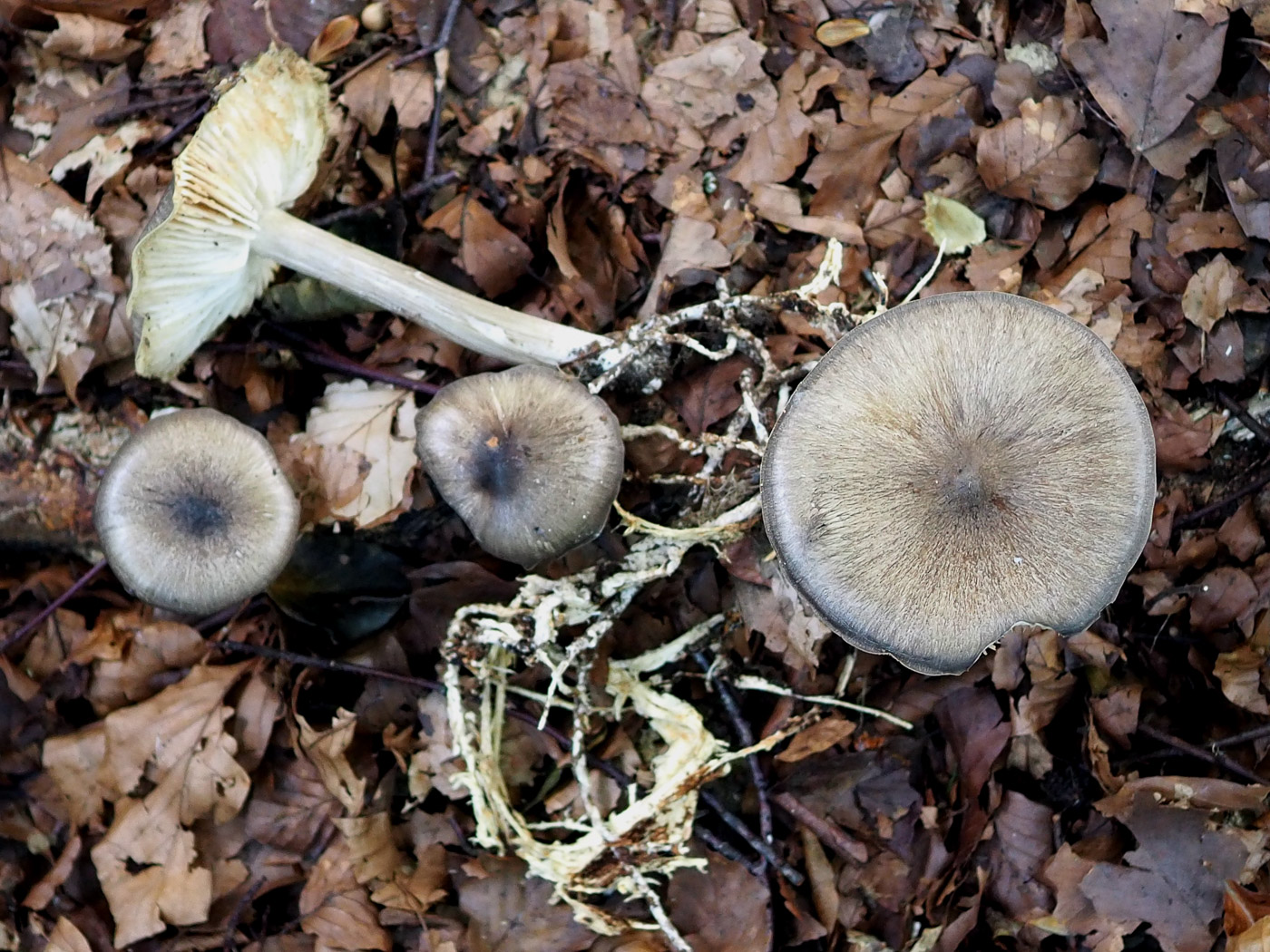 |
September 11th Megacollybia platyphylla (Whitelaced Shank)
John Catterson found good examples of this common species in Tinkers Wood in Beech litter. One of several woodland species having similar dull brown caps, this one is easy to identify if you probe into the litter at its base (as John did) to reveal the long white strings of mycelium which are attached - a unique feature. That together with the cream rather widely spaced gills are good characters in the field.
|
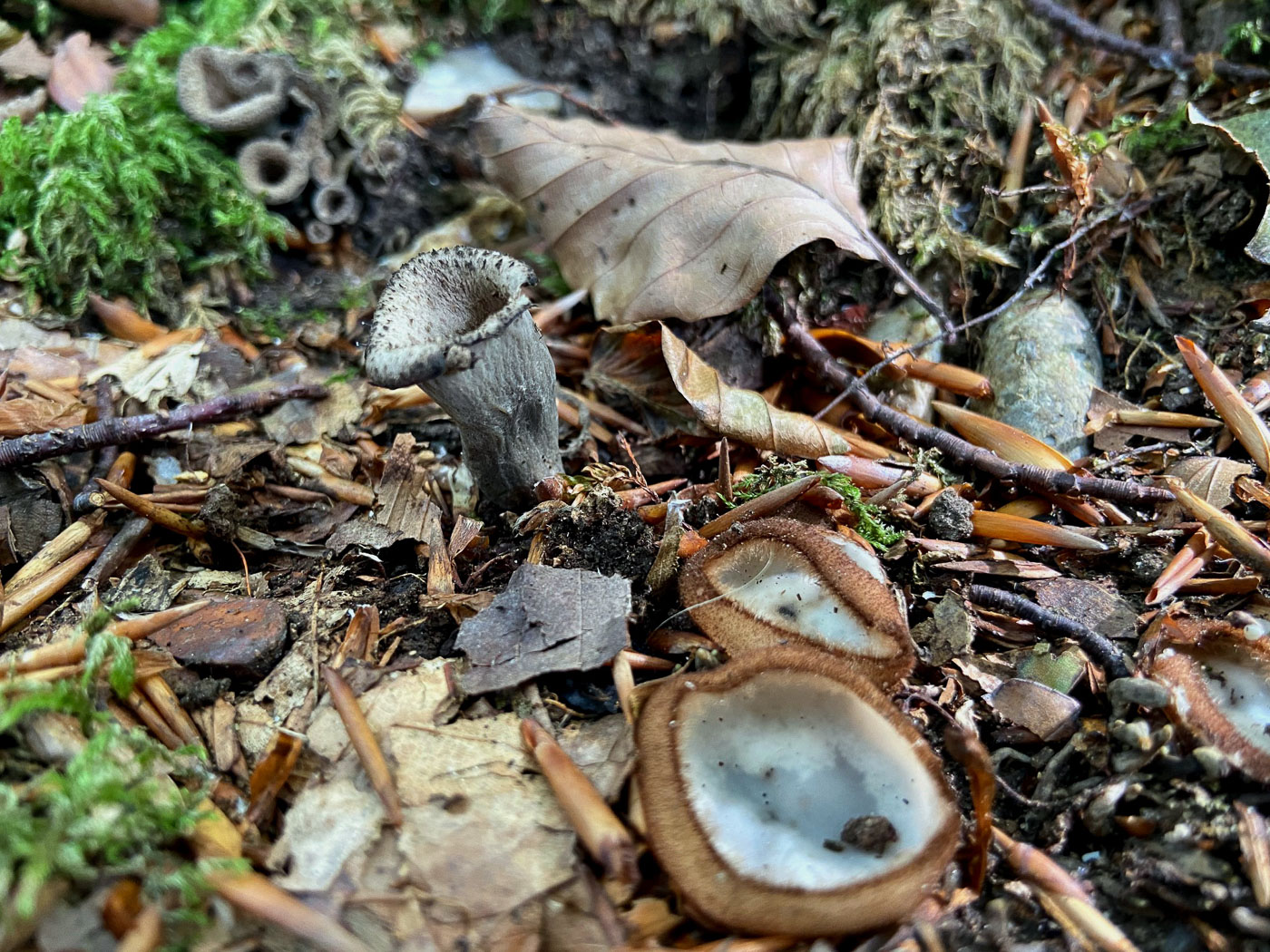 |
September 11th Humaria hemisphaerica (Glazed Cup) with Craterellus cornucopioides (Horn of Plenty)
Two for the price of one in Bradenham Woods found by Sarah Ebdon September 9th. The cups in the foreground are similar to the genus Peziza but have a fringe of fine hairs around the rim and on the outer surface. They are found in damp woody litter. The Horn of Plenty is quite common in deciduous woodland but is easily missed among the surrounding litter. It seems to prefer sloping ground.
|
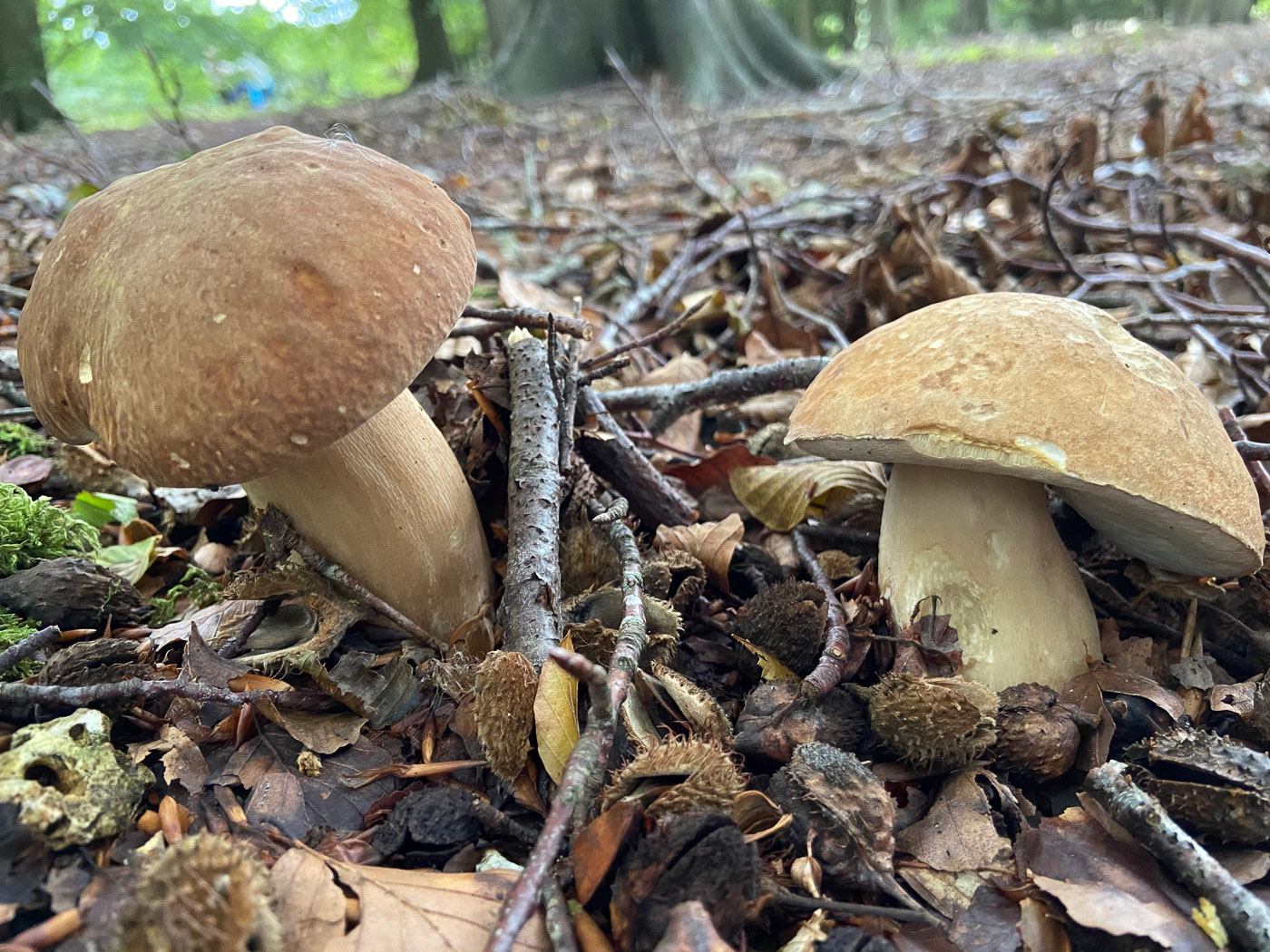
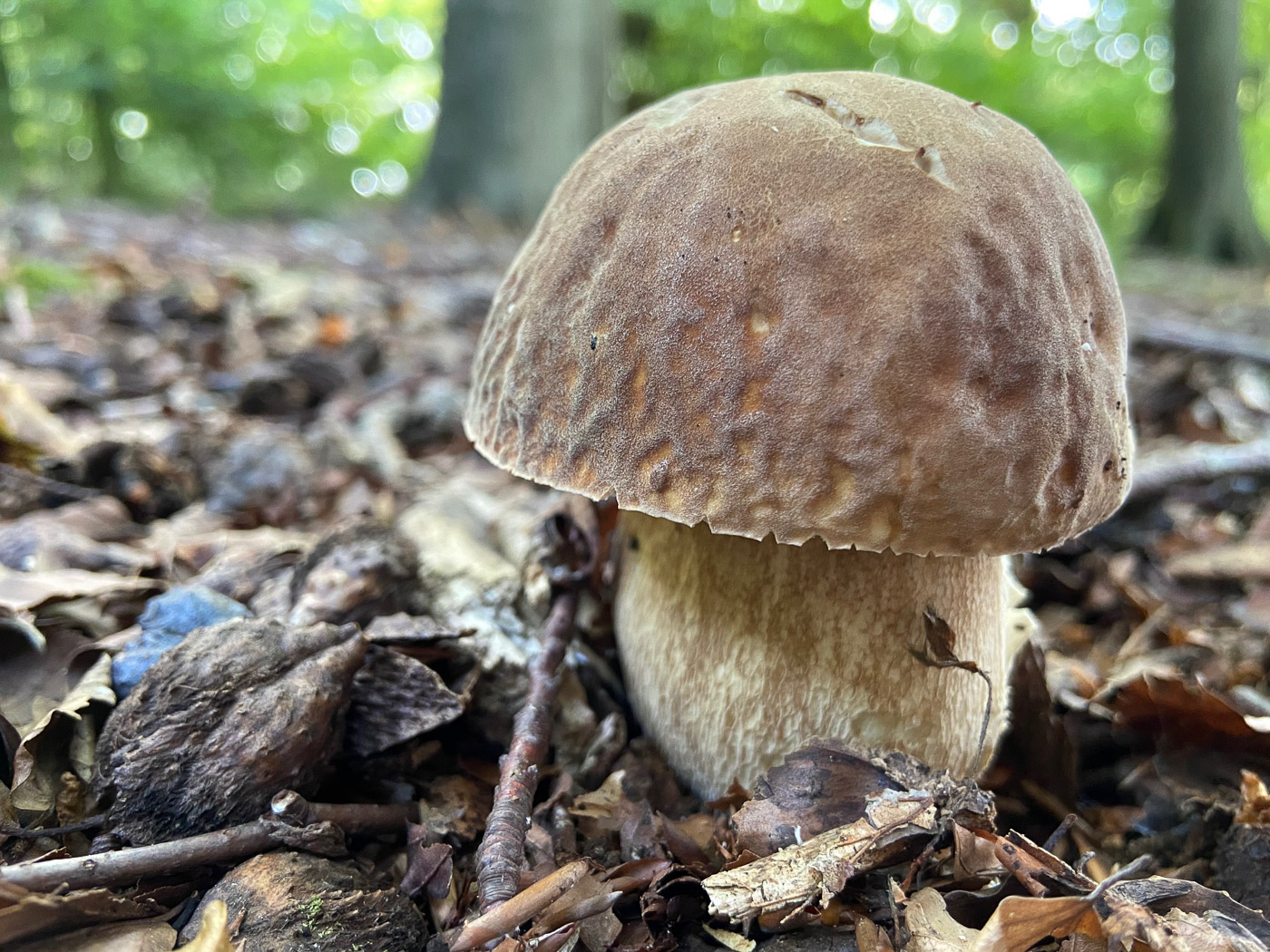
|
September 11th Boletus edulis (Penny Bun / Cep / Porcini)
Two separate collections of a species which seems to be fruiting well at the moment: the singleton is from Bradenham Woods and the doubleton from nearby Naphill Common a week earlier by Sarah Ebdon. One of very few boletes which still retain the genus name Boletus, it has pores which don't stain blue when pressed and that often become yellow as it matures.
|
September 10th 2020
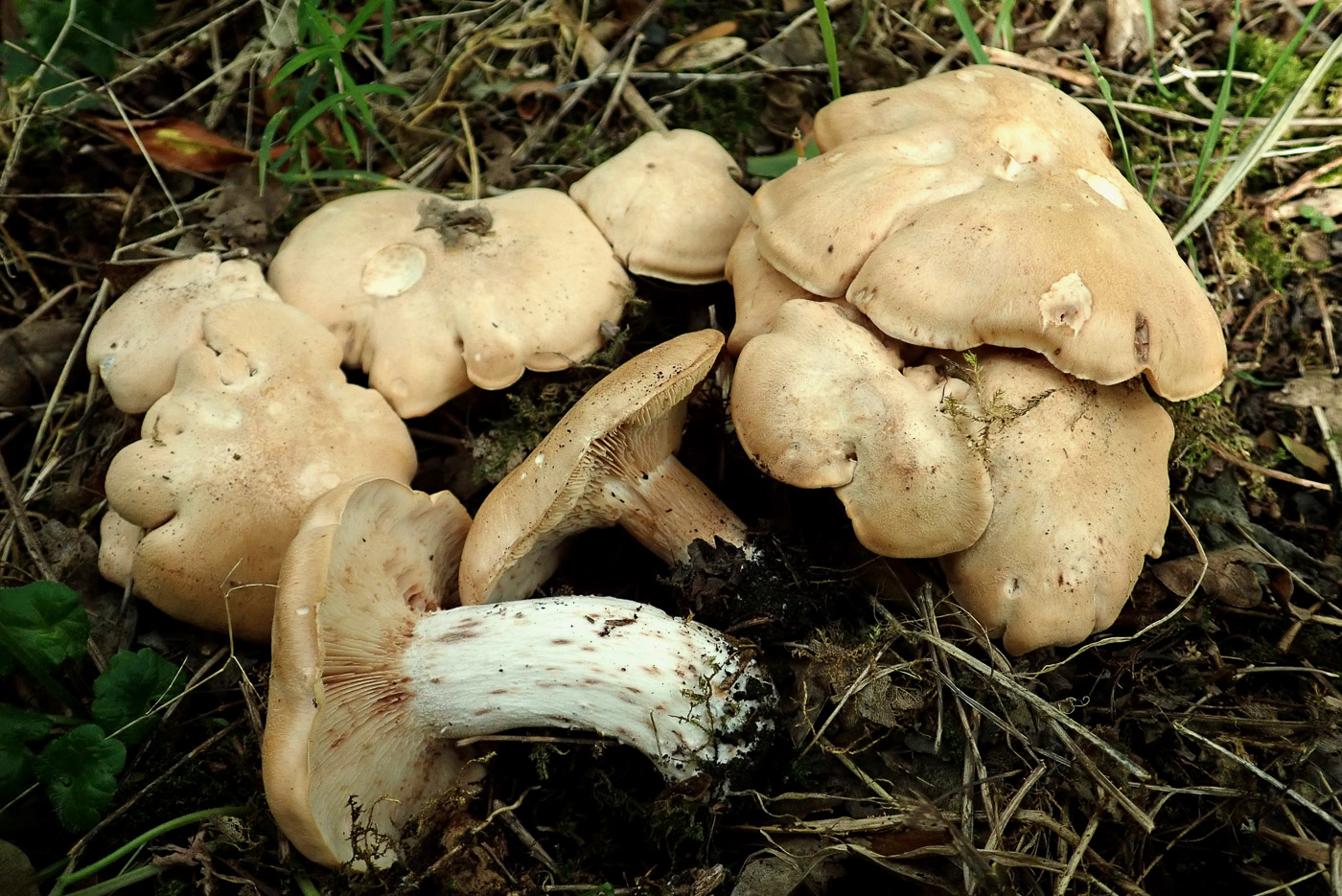 |
September 10th Rhodocybe gemina (Tan Pinkgill)
Penny found several collections of this sometimes rare species at Rushbeds Wood growing beside a path in grassy soil. It has 'good years' but in other years is hardly recorded at all though it seems to turn up quite frequently at this particular site. So it's one to look out for locally at the moment.
|
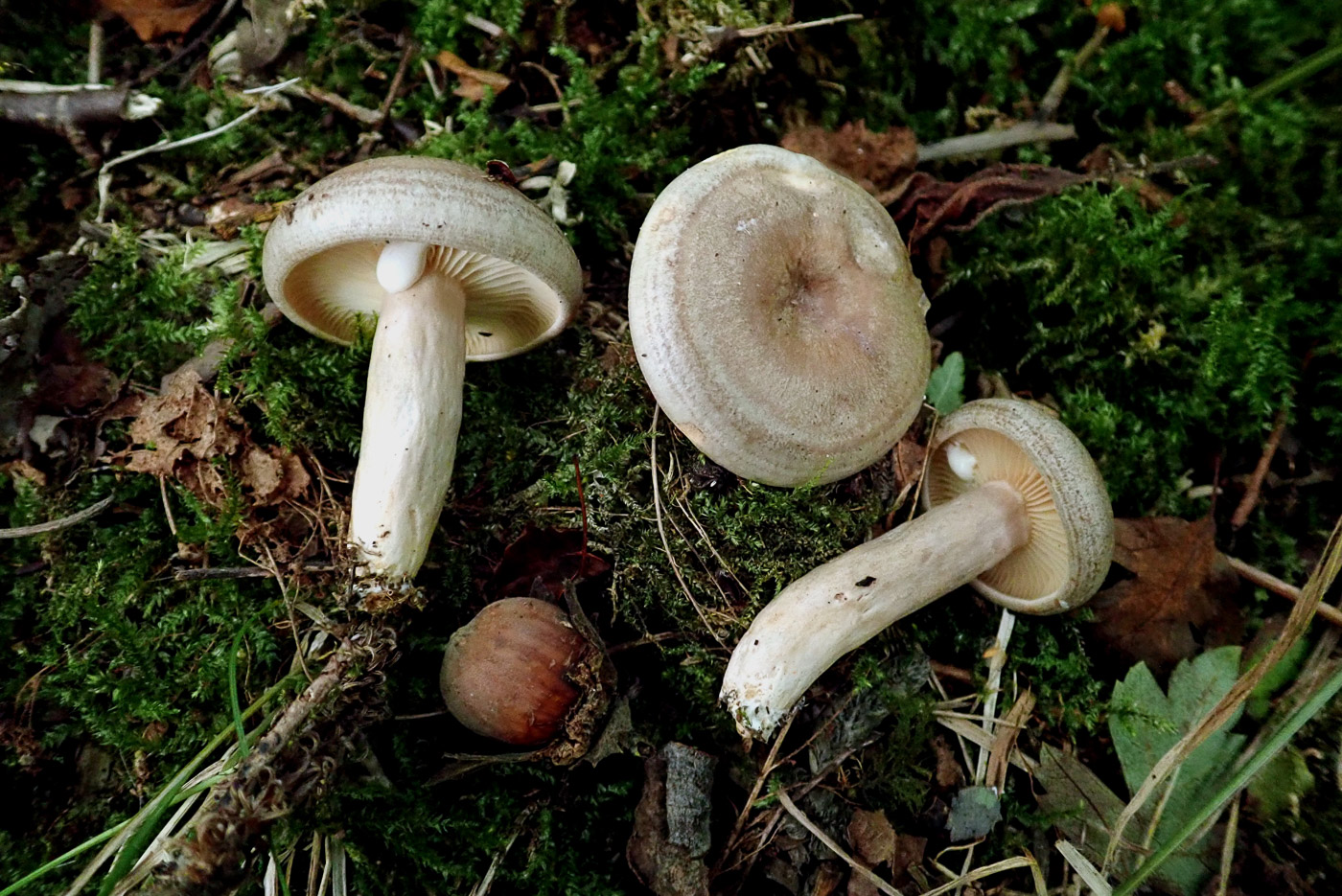 |
September 10th Lactarius pyrogalus (Fiery Milkcap)
Host specific with Hazel, this species of Milkcap is one of the hottest tasting in the genus, hence its common name. It was found by Penny Cullington in Rushbeds Wood. Tasting in this genus is a method often used in the field as an identification aid, but luckily this species is easily recognised without the need to burn one's mouth if one notices the host tree and also its pinkish peach coloured gills. It usually exudes copious milk when damaged, as here.
|
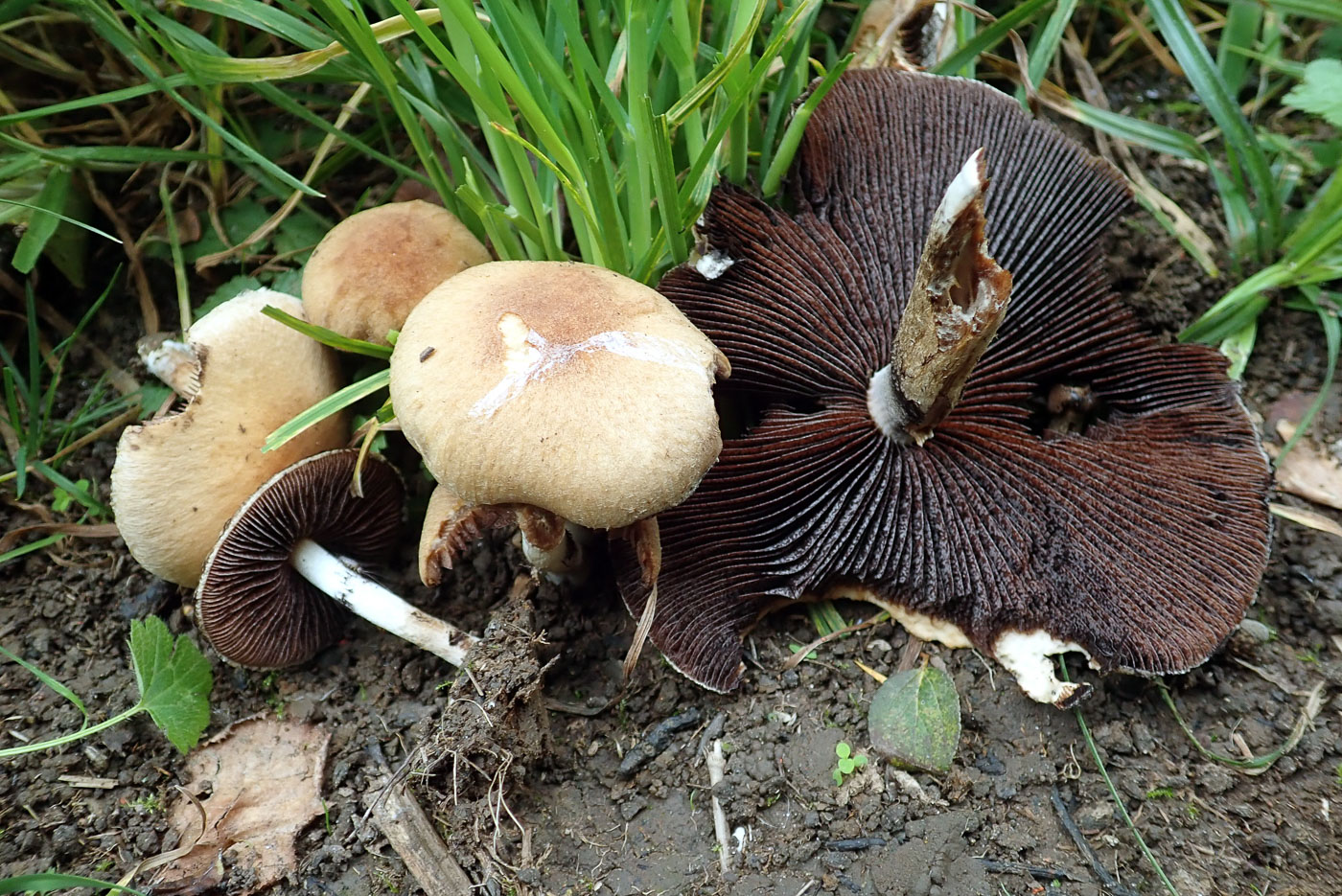 |
September 10th Lacrymaria lacrymabunda (Weeping Willow)
Penny Cullington found this collection growing in a grassy path at Rushbeds Wood. A common grassland species, in damp weather the dark gills often have droplets, leaving a rather blotchy gill edge as can be seen here - a good field character.
|
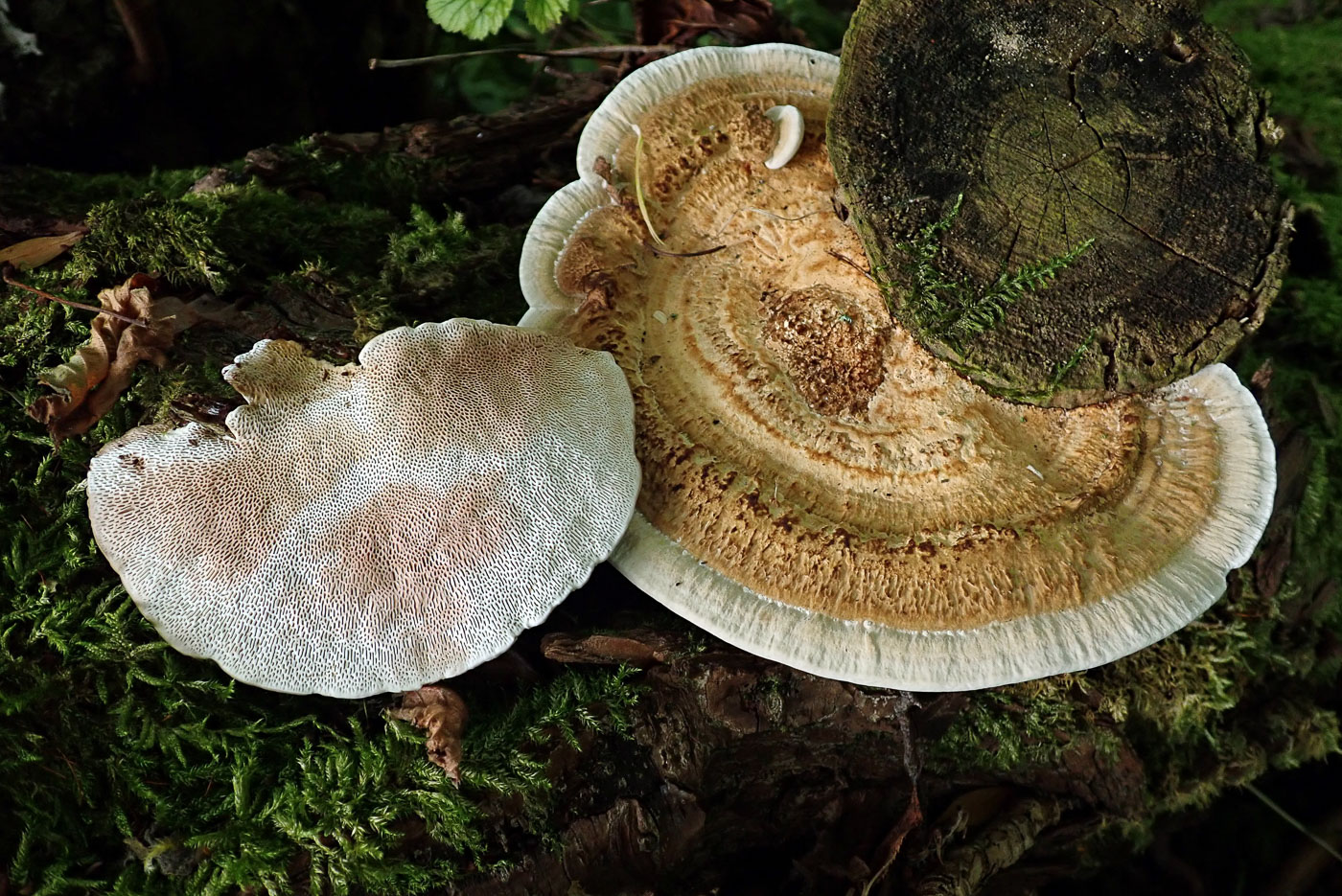 |
September 10th Daedaleopsis confragosa (Blushing Bracket)
These were nice fresh examples of a very common bracket fungus found by Penny Cullington on fallen Willow at Rushbeds Wood and show the diagnostic pink blush which quickly occurs on the maze-like pores underneath where it was handled. When older or dry this reaction is not visible. This species is most common on Birch and Willow but also occurs on other deciduous fallen wood. The zones of colour on the top surface often contain red - not in today's collection.
|
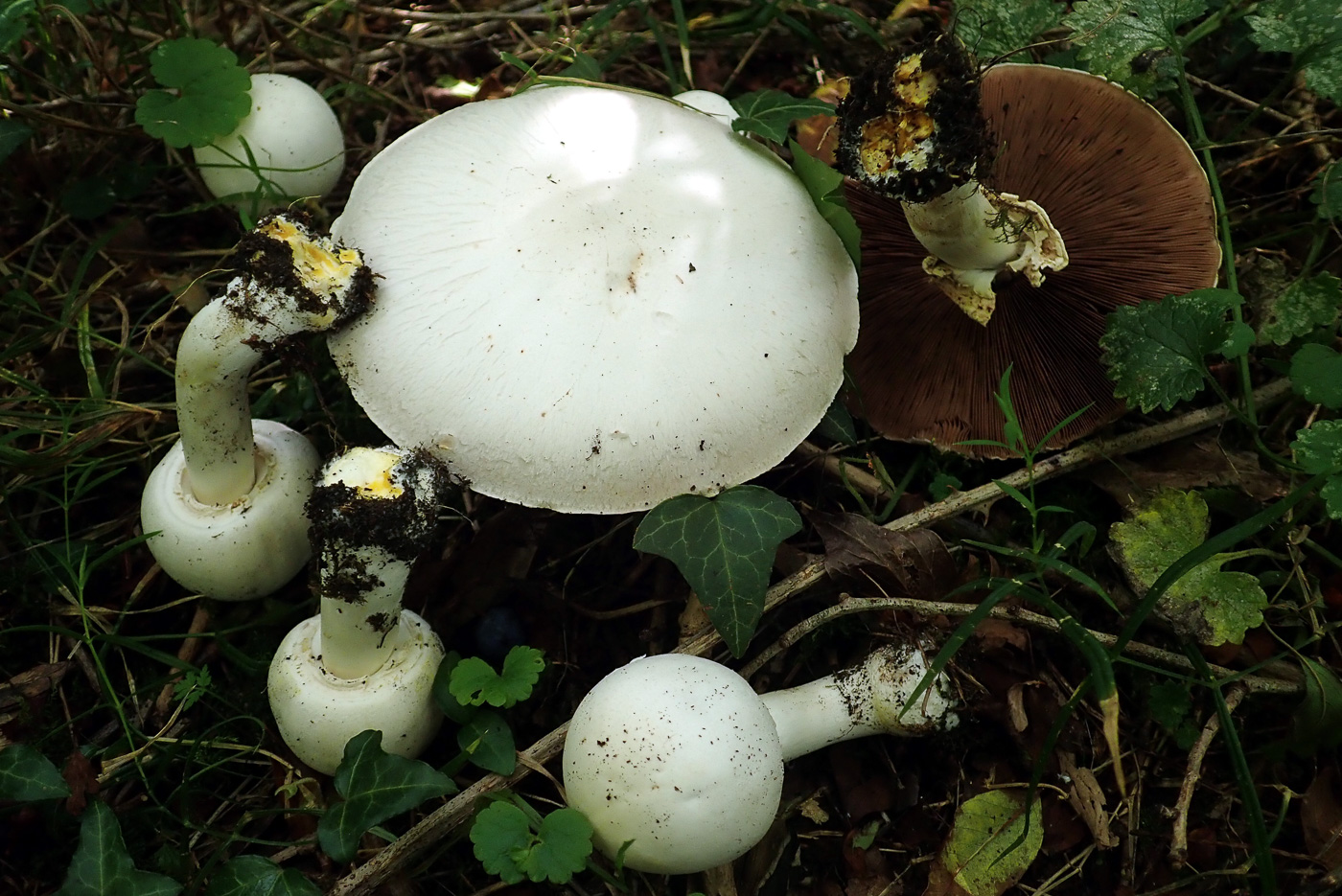
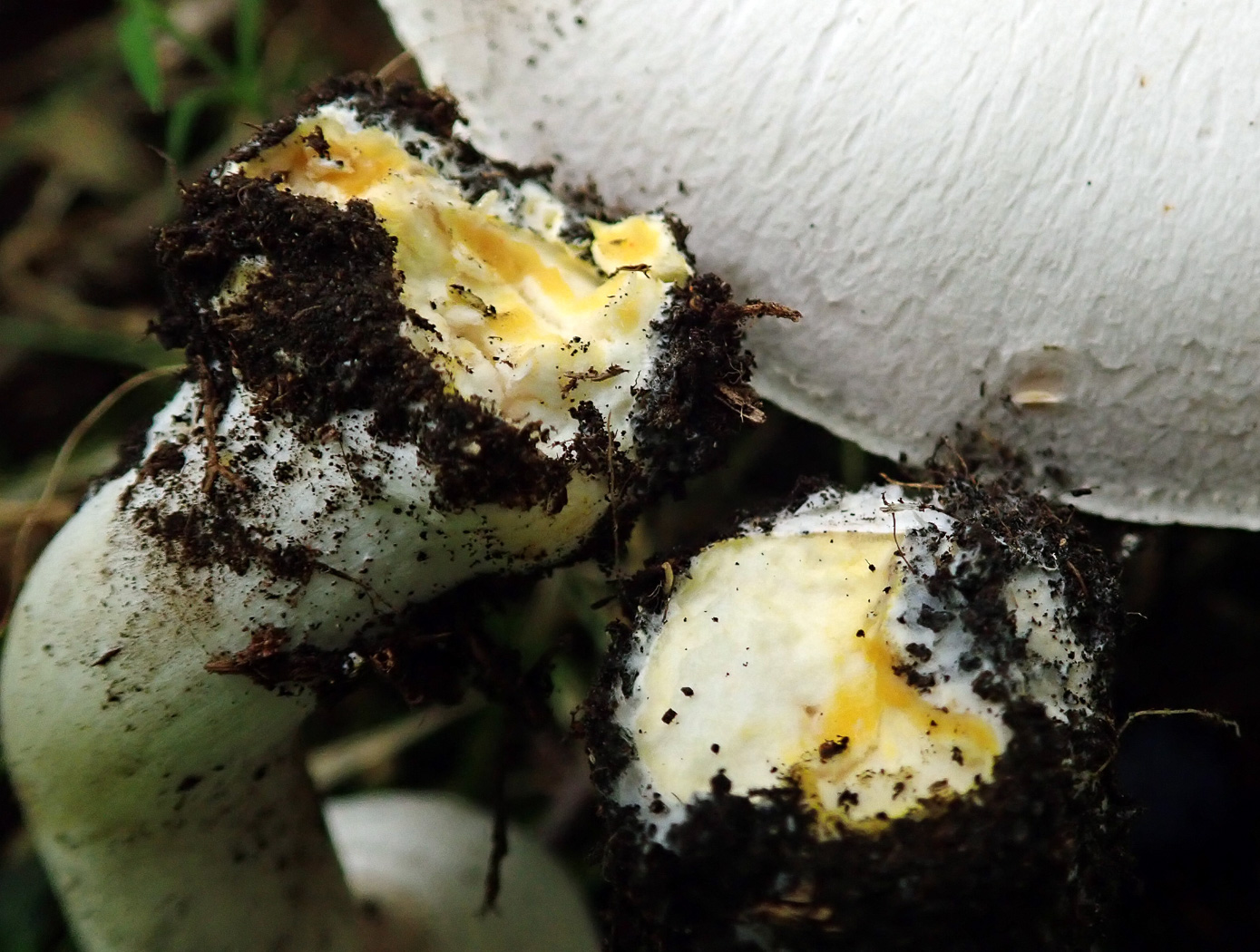
|
September 10th Agaricus xanthodermus (Yellow Stainer)
This was found fruiting in large numbers in Rushbeds Wood by Penny Cullington. There are certainly edible mushrooms around at the moment but this is not one of them and can cause gastric upsets. It can be separated from other very similar species of Agaricus by the tell tale bright chrome yellow stains which develop in seconds when you scratch the very base of the stem; it also has a different inky smell. Many other Mushroom species can show yellow staining elsewhere on the fruitbody but only this one reacts in this way at the stem base.
|
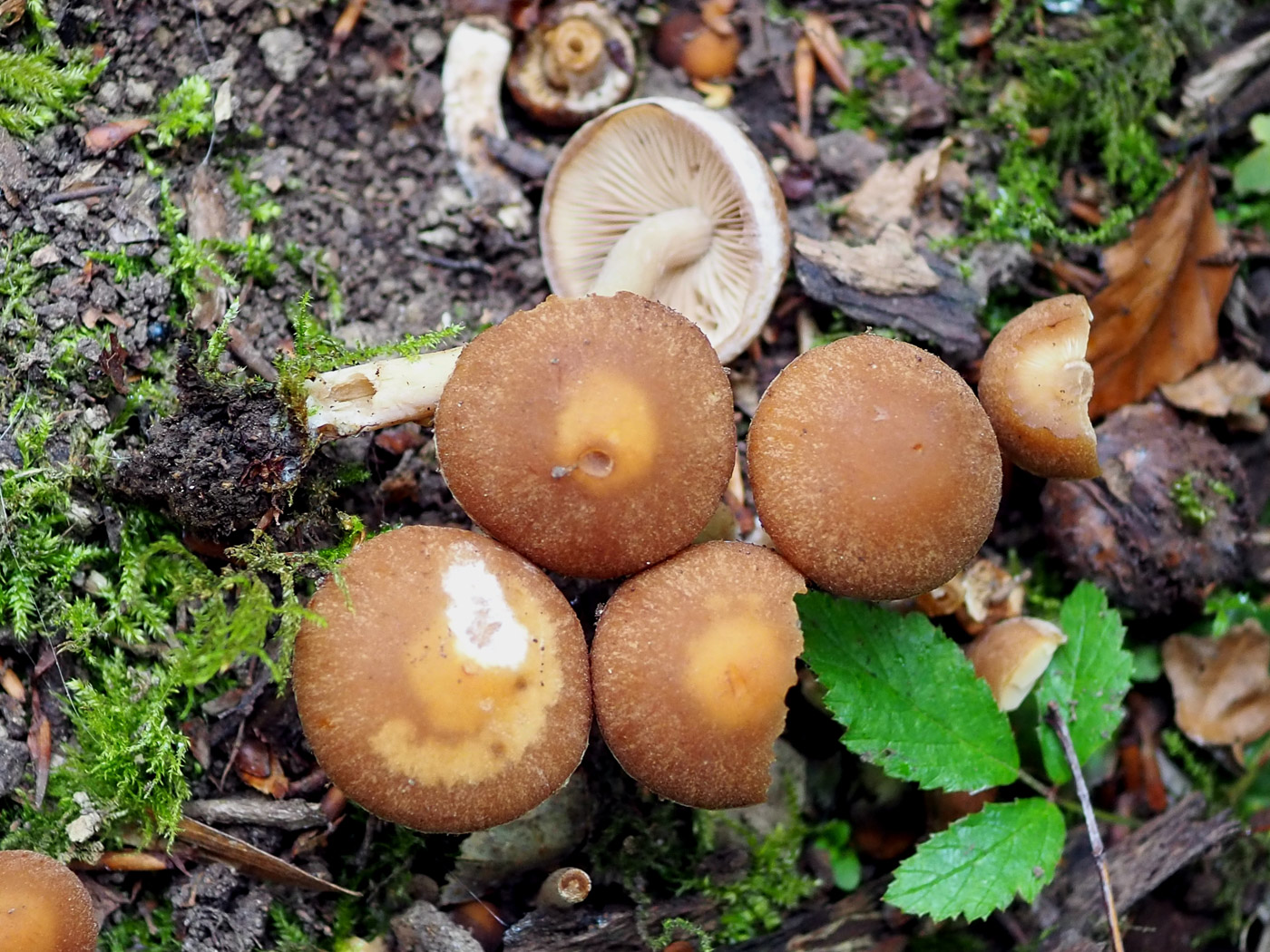 |
September 10th Psathyrella piluliformis (Common Stump Brittlestem)
This young fresh material is an example of one of the few species in a difficult genus which can be named in the field, and was found by John Catterson at Coombe Hill fruiting on a deciduous log. Despite the pale gills of this collection, when more mature the gills become blackish brown from the dark spores. It is a common species and often to be found in large colonies on fallen wood.
|

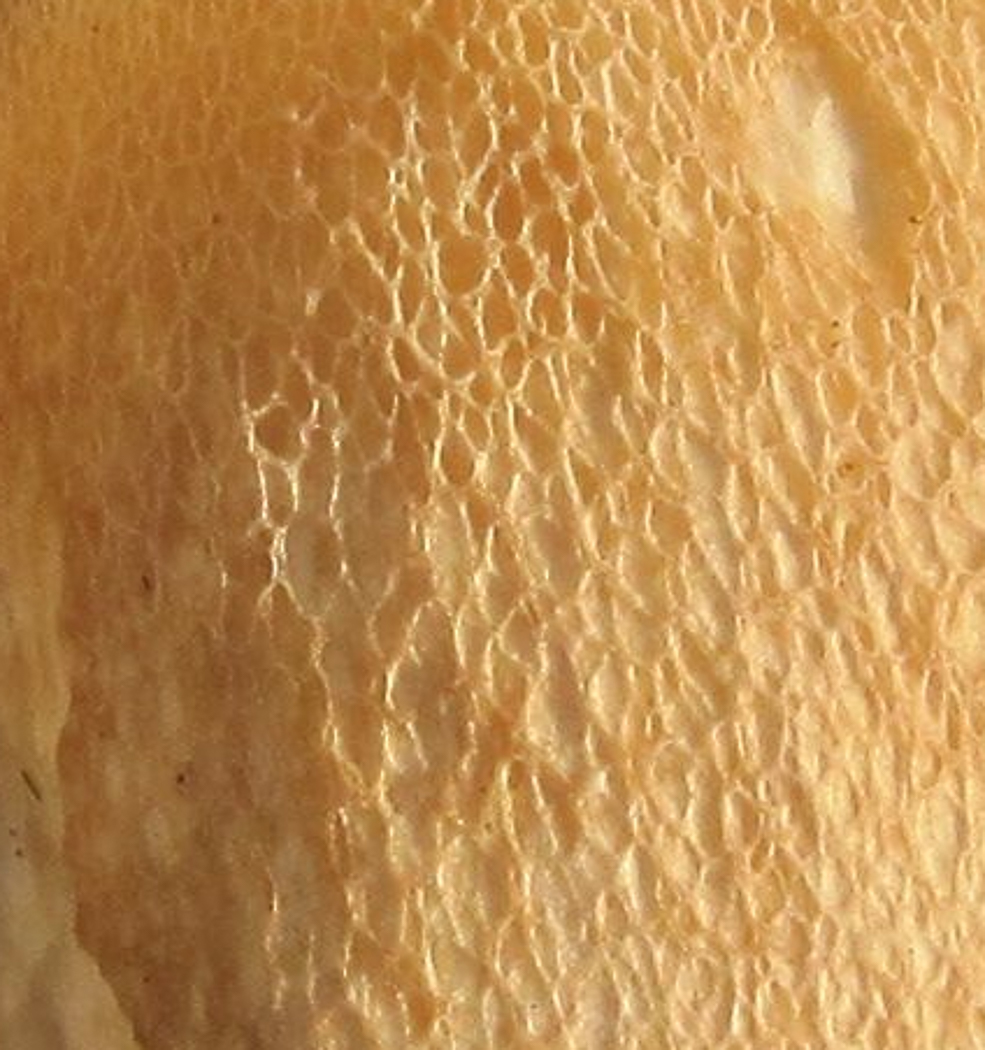
|
September 10th Boletus reticulatus (Summer Bolete)
Previously B. aestivalis and closely related to B. edulis, this seldom recorded and early-fruiting species was found by Greg Douglas in Captain's Wood, Chesham under Beech. Easily mistaken for B. edulis, it differs in having a cap which tends to disrupt when dry and a stem with a complete rather than partial reticulation (fine network - see second photo for detail).
|
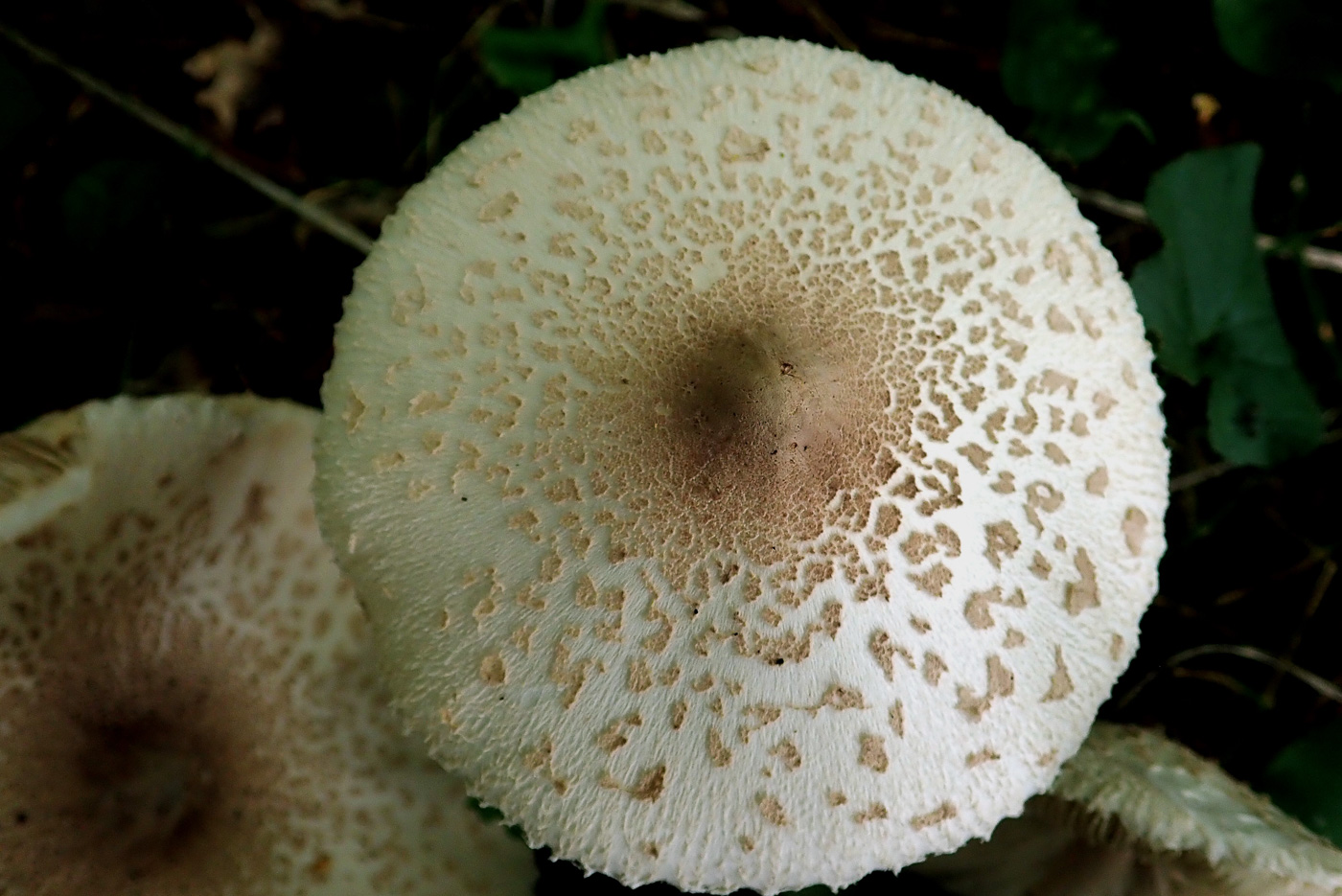
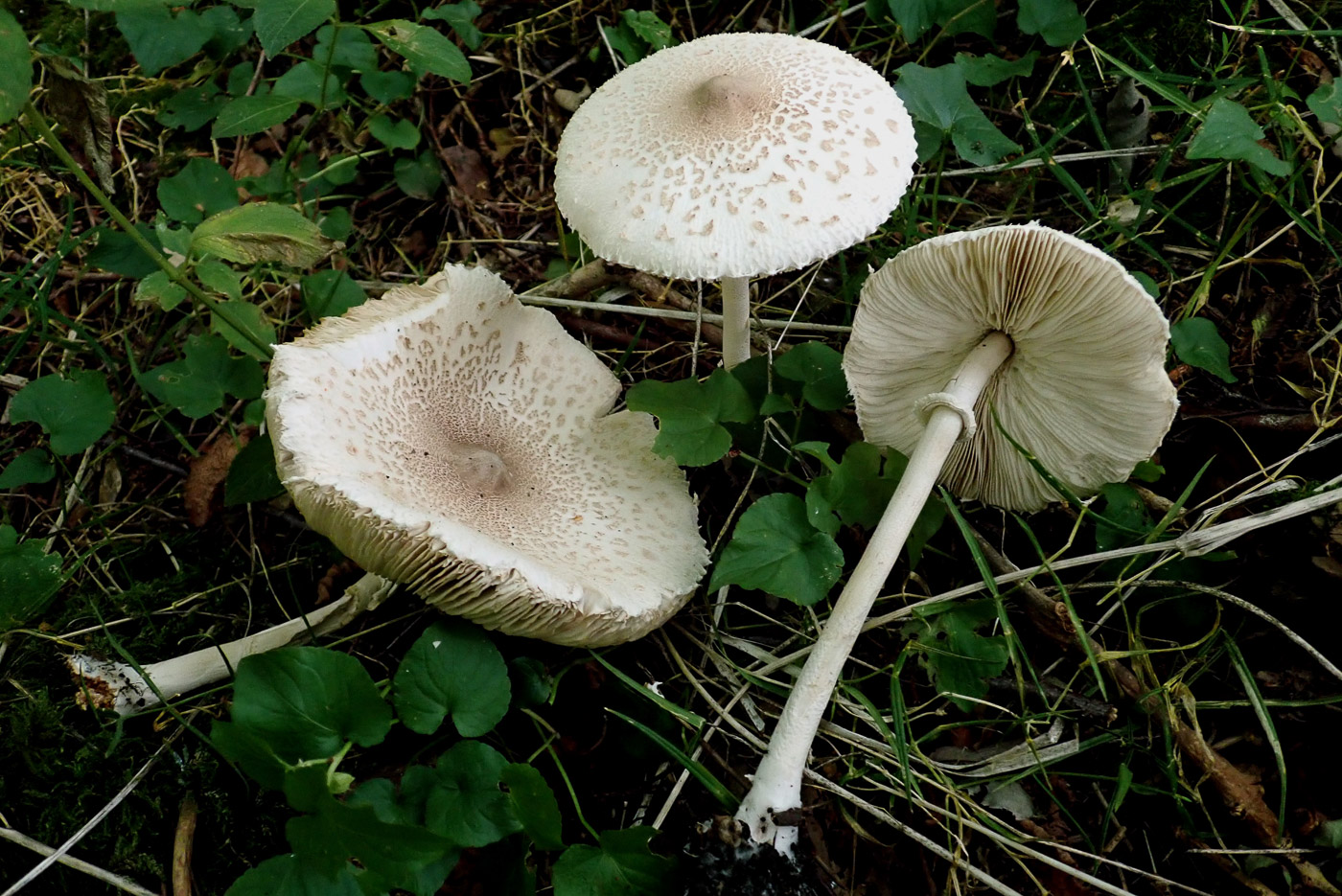
|
September 10th Macrolepiota mastoidea (Slender Parasol)
Found by Penny Cullington growing at the pathside in Rushbeds Wood, this graceful species is less common than the Parasol and Shaggy Parasol and separated from them by the paler small granular scales on the cap and stem and by the prominent umbo (bump) in the cap centre - like a nipple, hence its common name. There is debate whether the extremely similar M. konradii (which lacks the nipple) is a separate species because intermediates occur where the umbo is hardly prominent at all, but at present both go under the name of M. mastoidea.
|
September 9th 2020
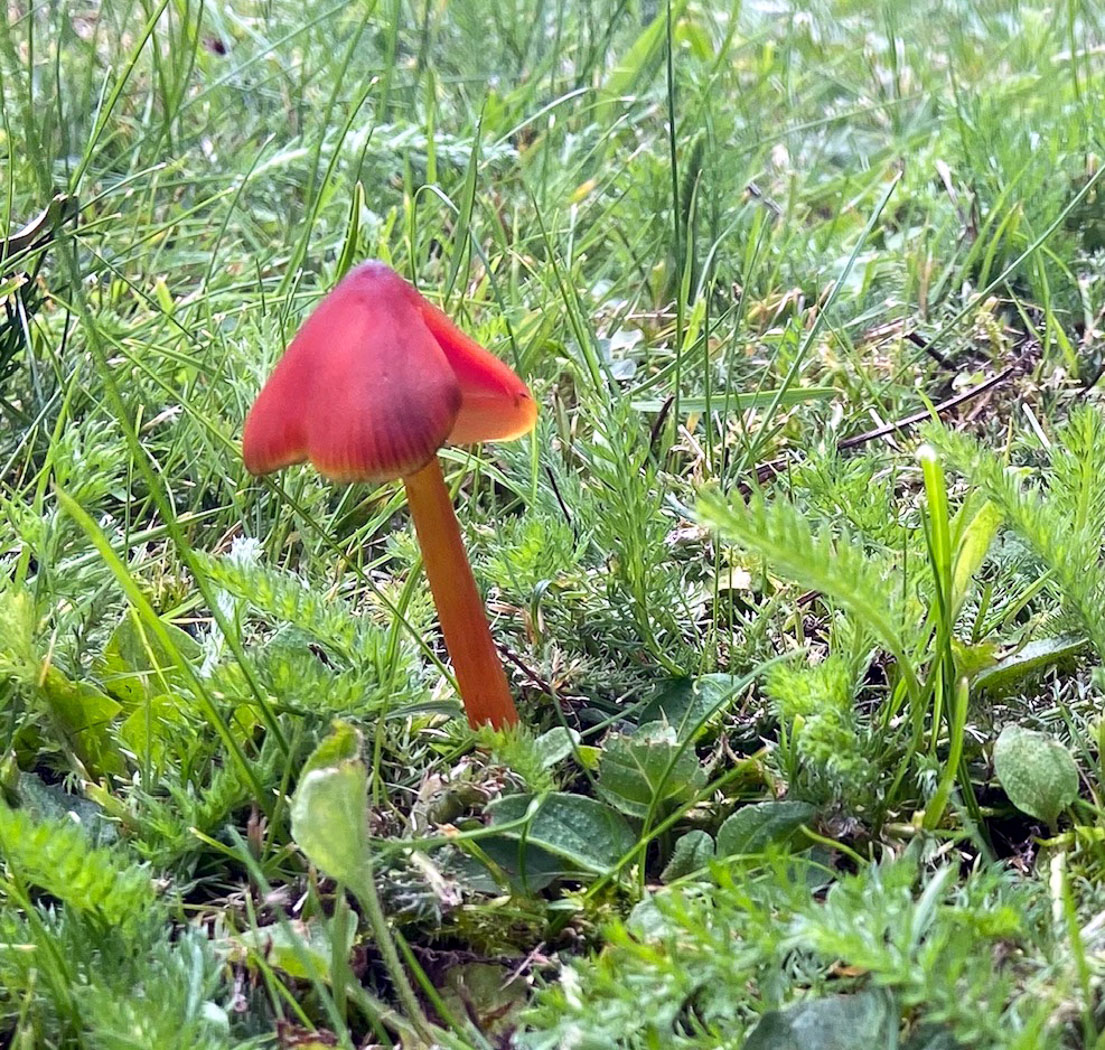
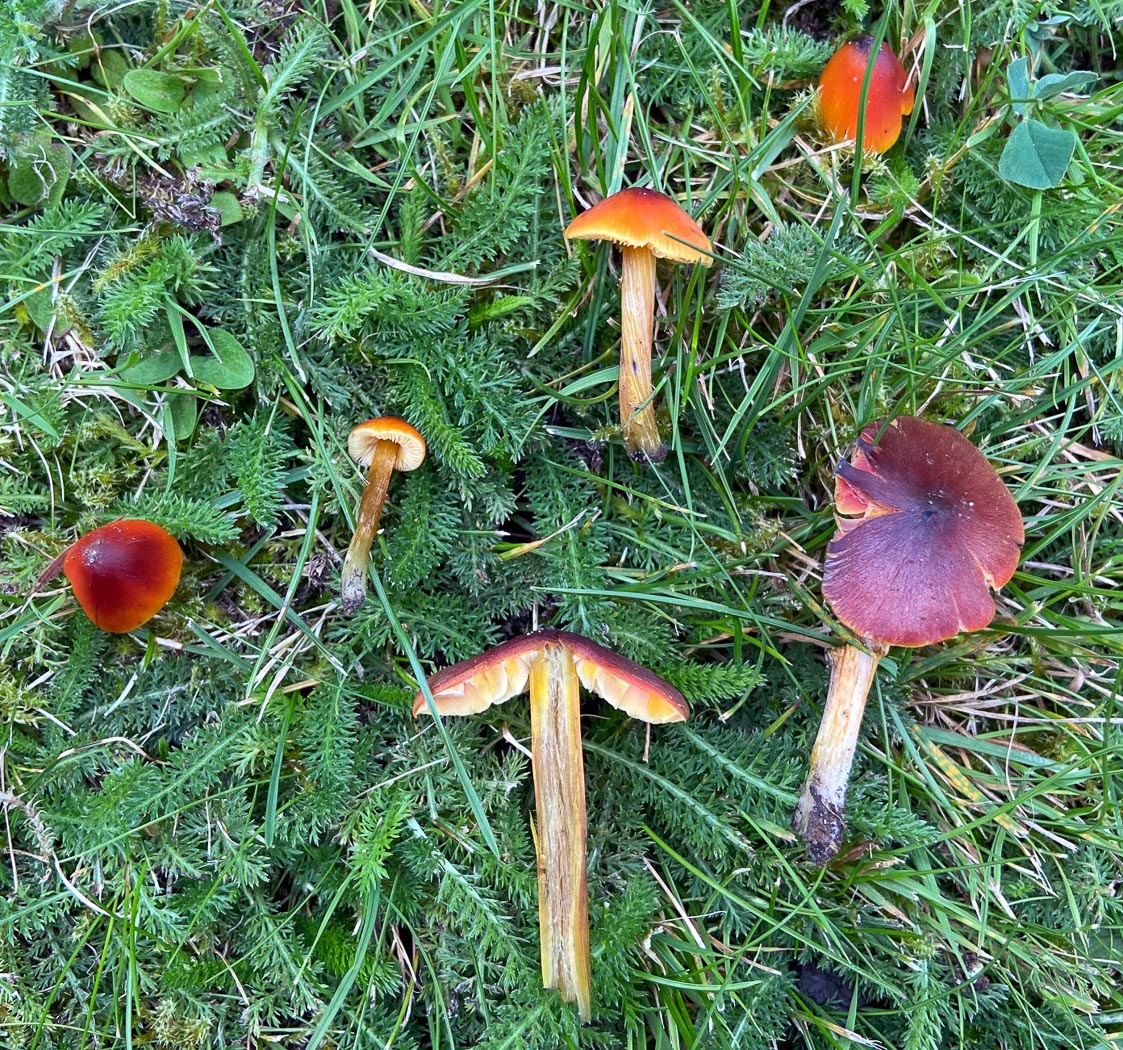 |
September 9th Hygrocybe conica (Blackening Waxcap)
This eye-catching species was found fruiting on the lawn in a private garden in Tylers Green by Sarah Ebdon - yet another early showing of a species which usually fruits mid to late season. So it's worth looking at lawns and grassland for other waxcaps which may well be following suit at the moment.
|
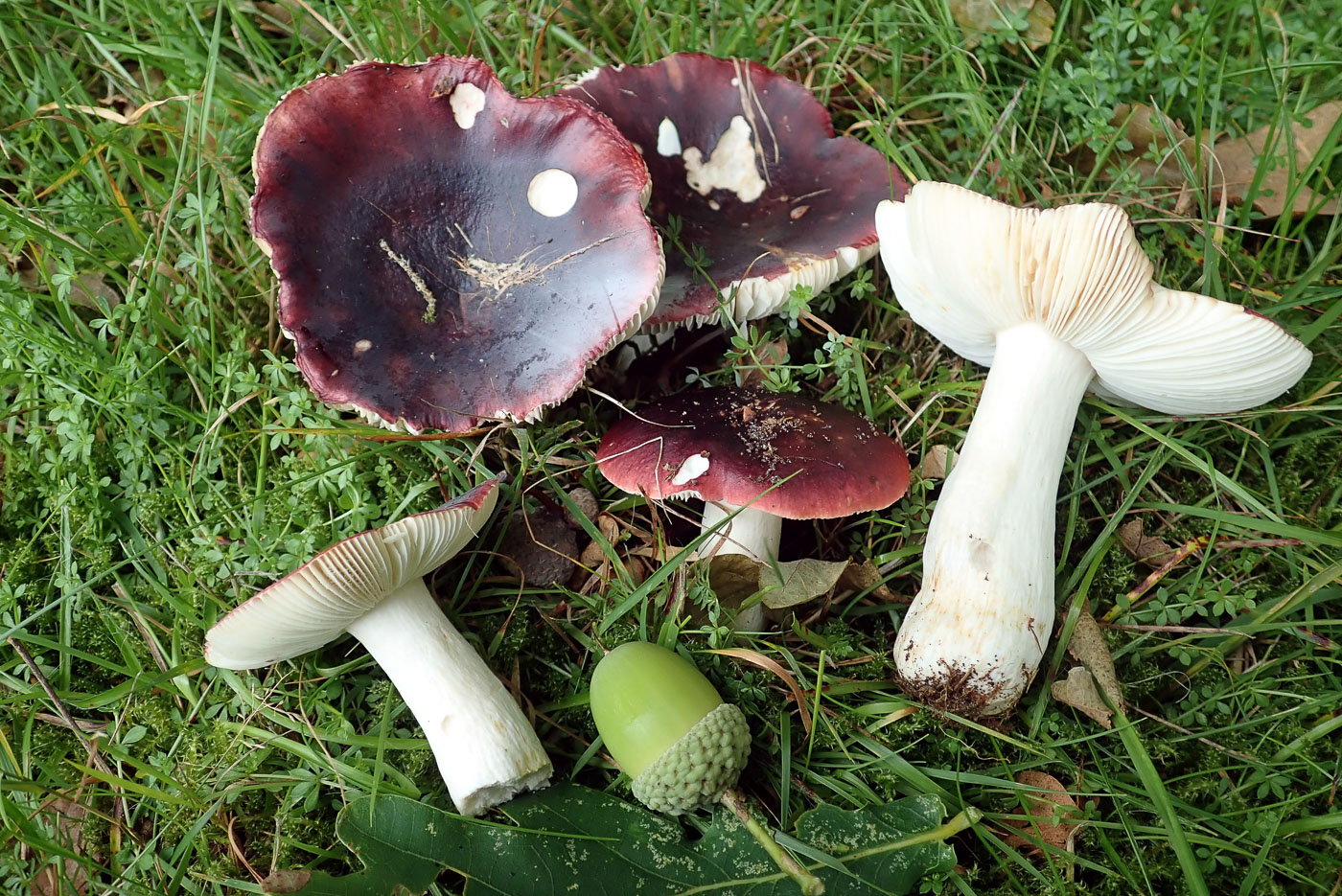 |
September 9th Russula atropurpurea (Purple Brittlegill)
One of the commonest species of Brittlegill, this collection was found by Penny Cullington in grass under Oak at The Common, Cadmore End. It fruits under many different deciduous trees and tends towards a purple shade of red with a darker to almost black centre. It can also have yellow patches on the cap. The gills are pale cream and the stem is pure white.
|
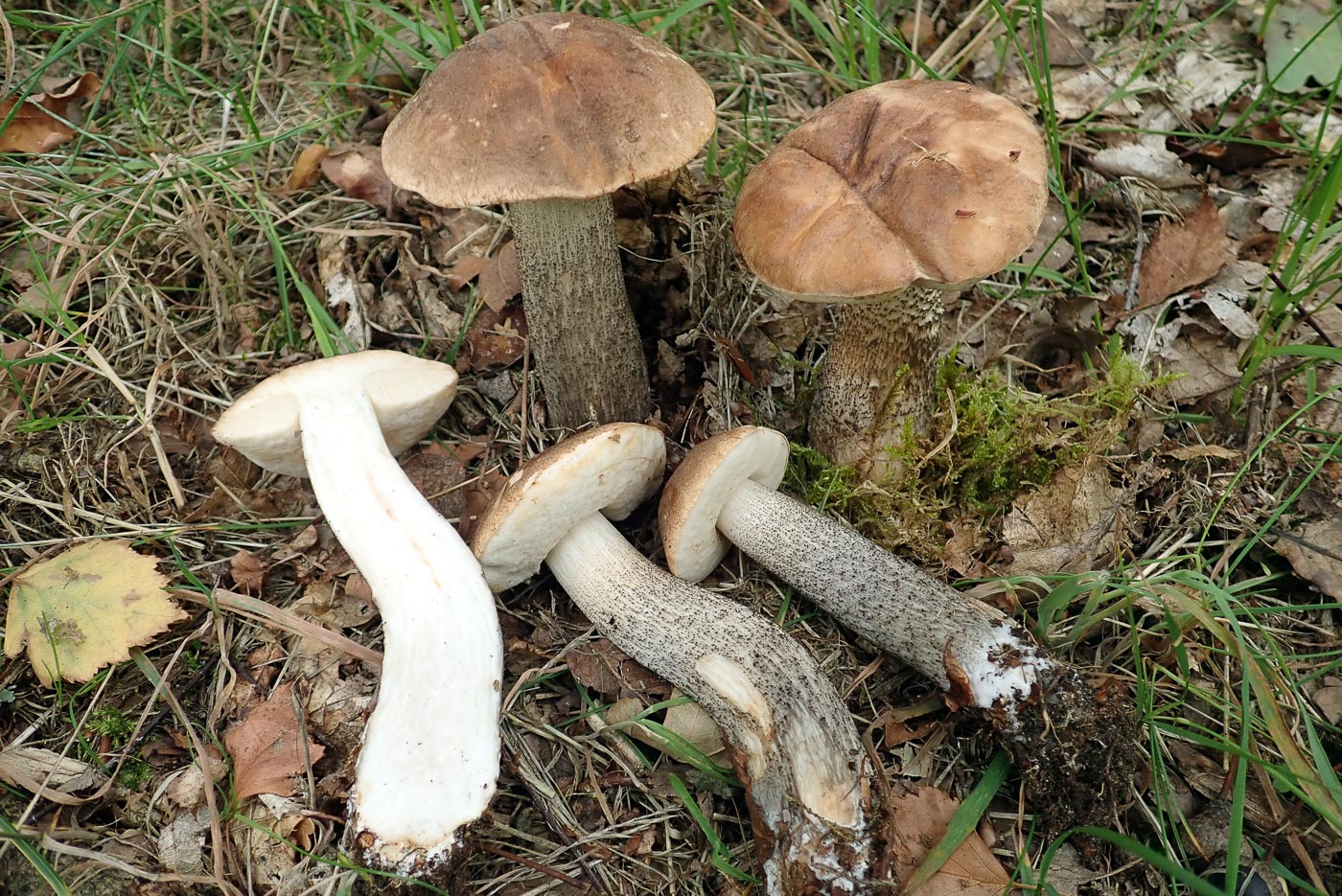
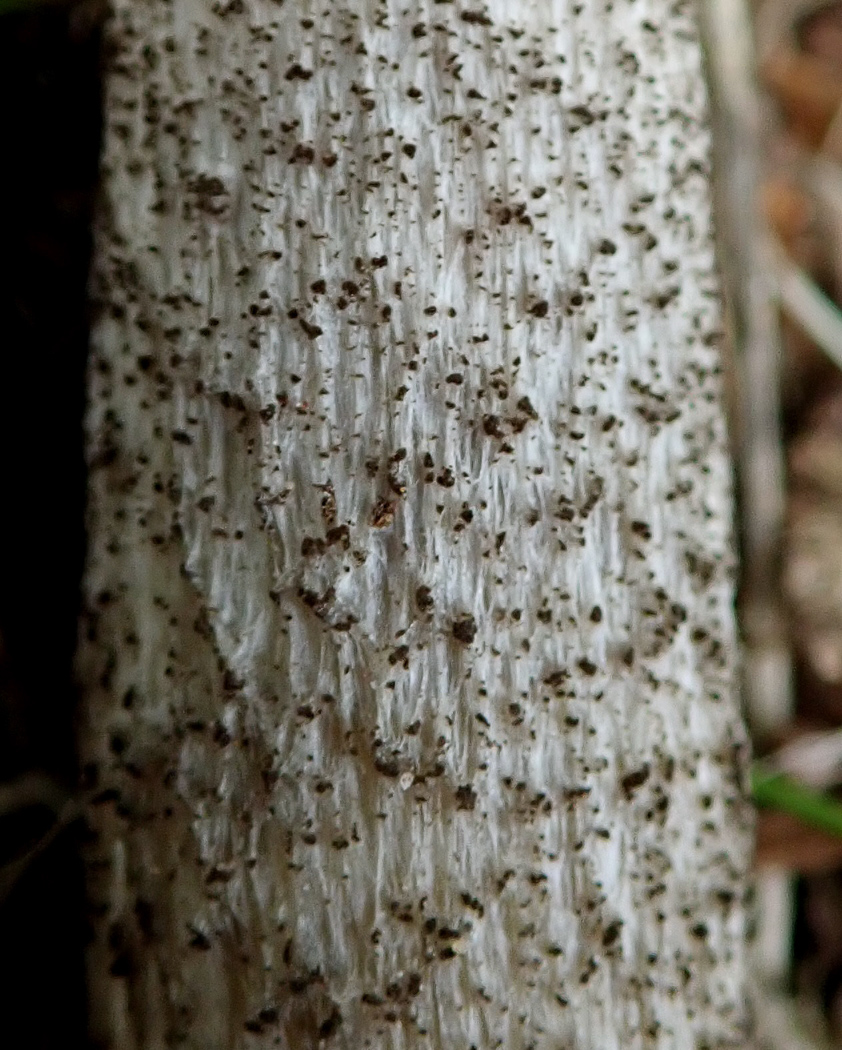
|
September 9th Leccinum scabrum (Brown Birch Bolete)
Perhaps the commonest species of Leccinum, this was found by Penny Cullington in grass under Birch at The Common, Cadmore End. Many of this genus are host specific to Birch as is this one. The blackish 'scabers' in the lower stem though paler at the top, also the unchanging stem flesh colour when cut, are good field characters. 
|
September 8th 2020
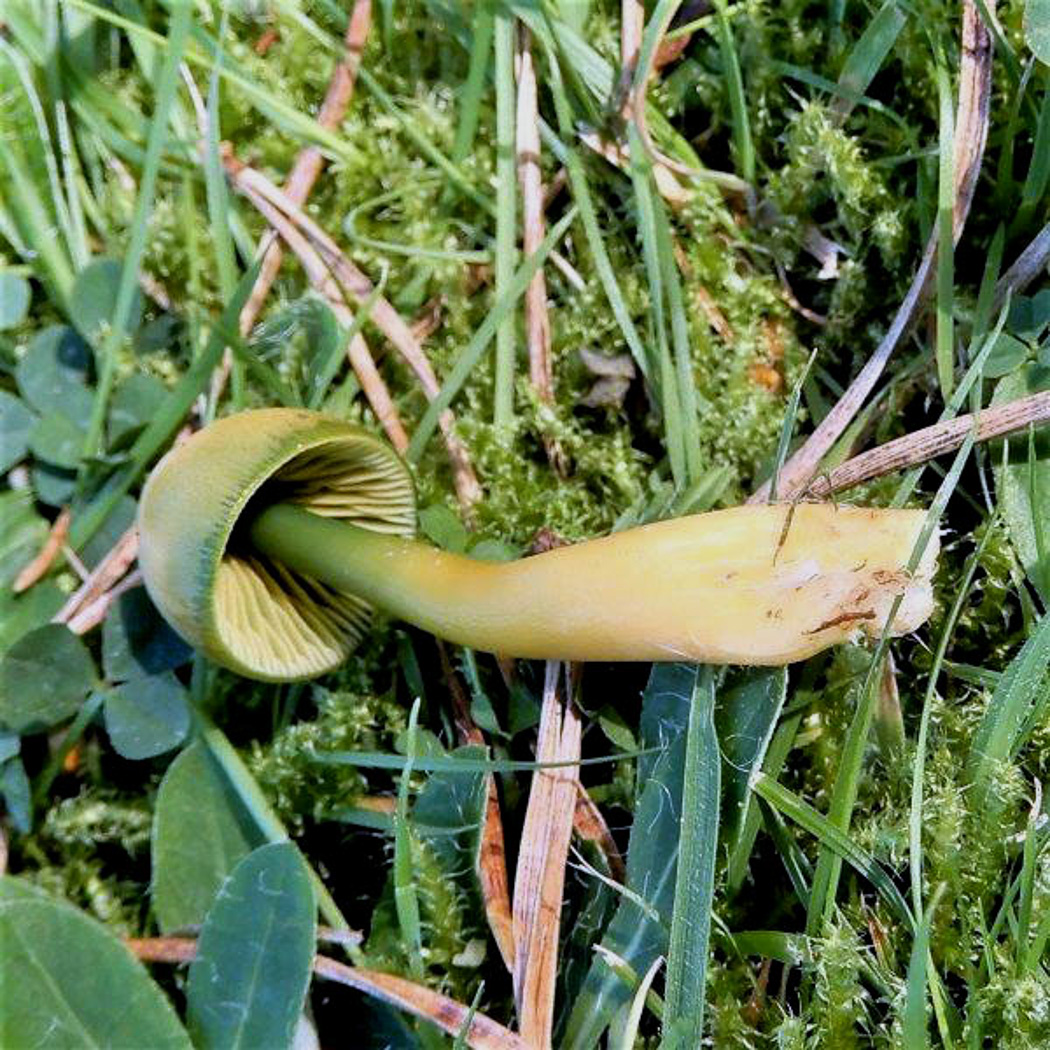 |
September 8th Hygrocybe psittacina (Parrot Waxcap)
Margaret Bolton was surprised to find this specimen so early in the season as most Waxcaps are late season fruiters. It was in unimproved mown grassland in Moor Common.
|
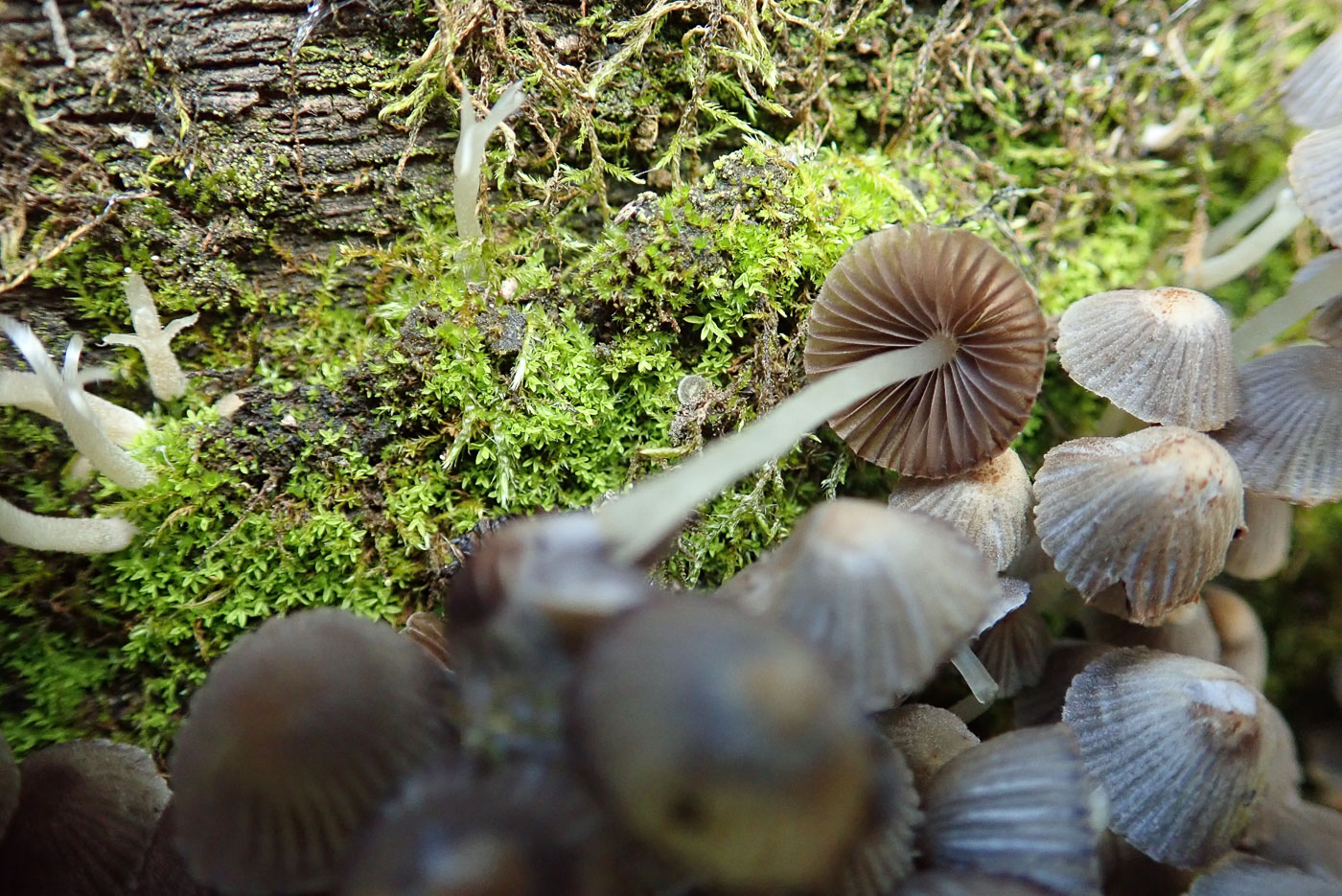
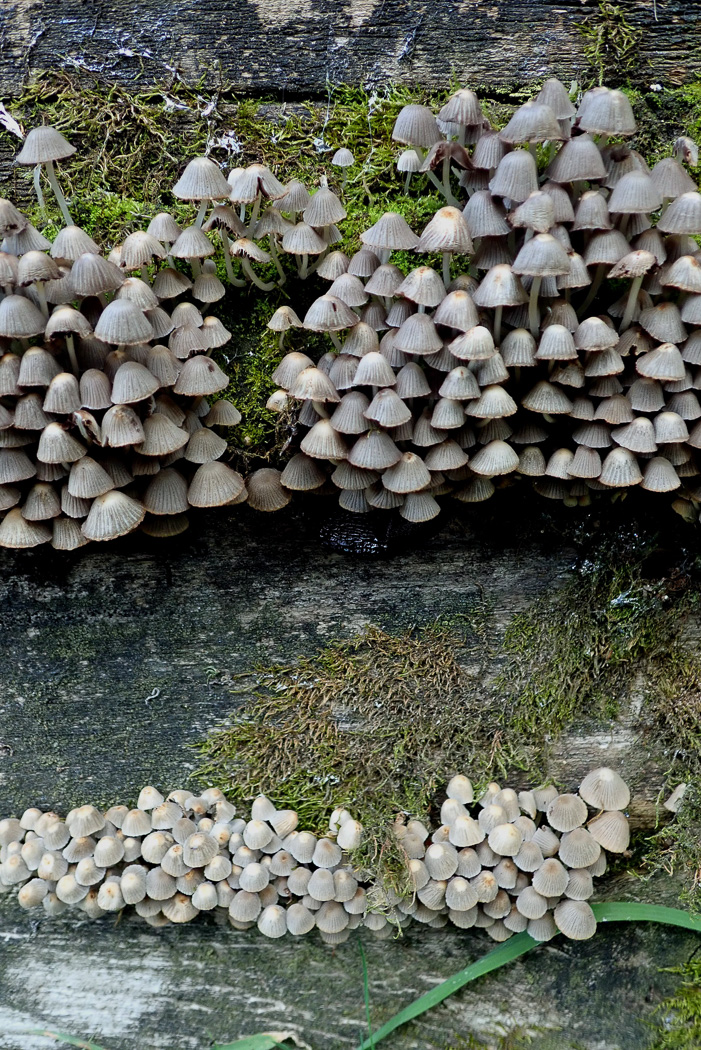
|
September 8th Coprinellus disseminatus (Fairy Inkcap)
Penny Cullington found this large troop of fruitbodies growing between the sleepers in the car park at Whiteleaf Cross. The species is common and is often to be found in large numbers on or around stumps or buried wood. It has the appearance of a Mycena (Bonnet) but note the dark gills, a feature of all Inkcaps, in contrast to the white gills of Bonnets.
|
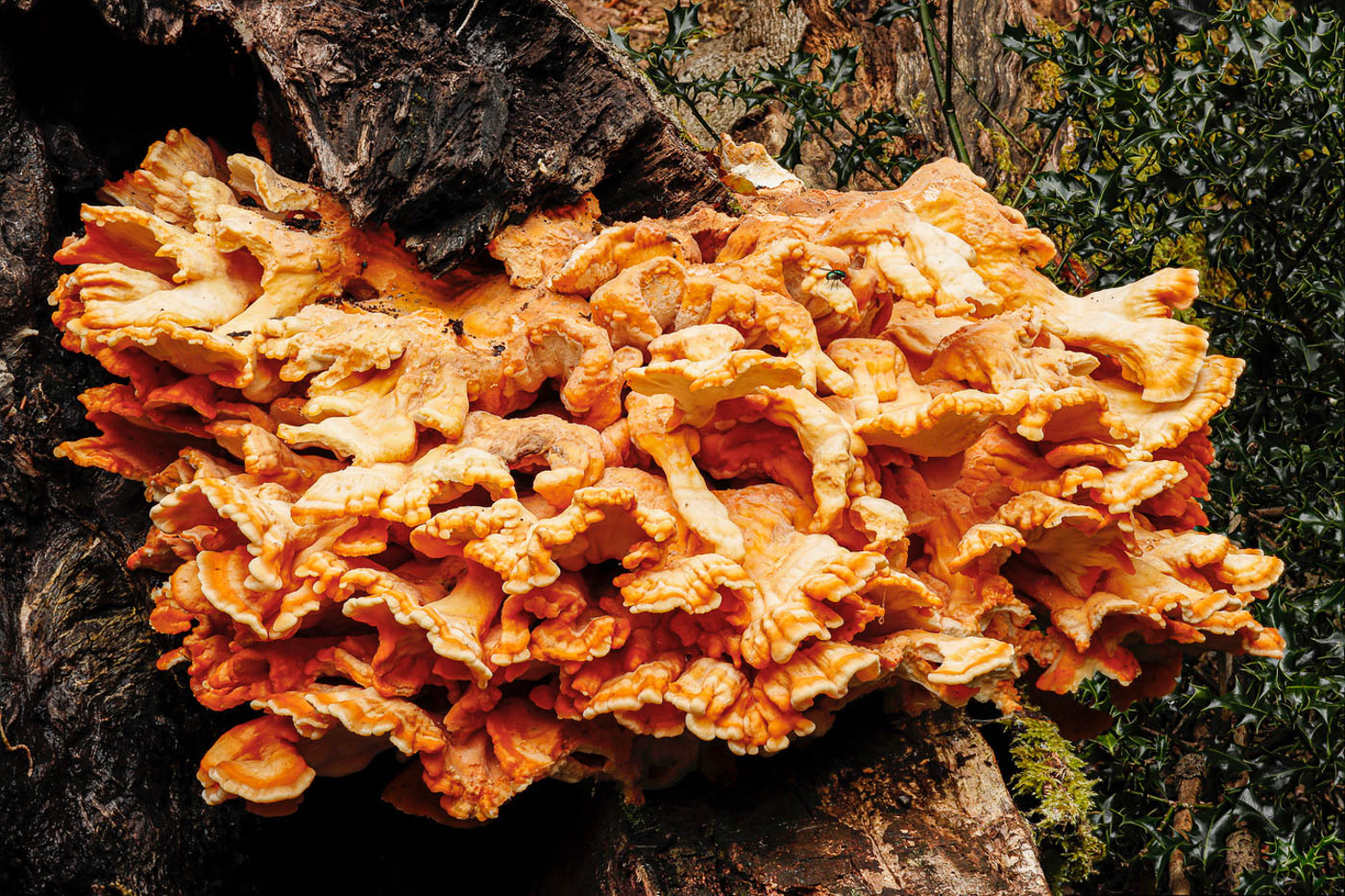
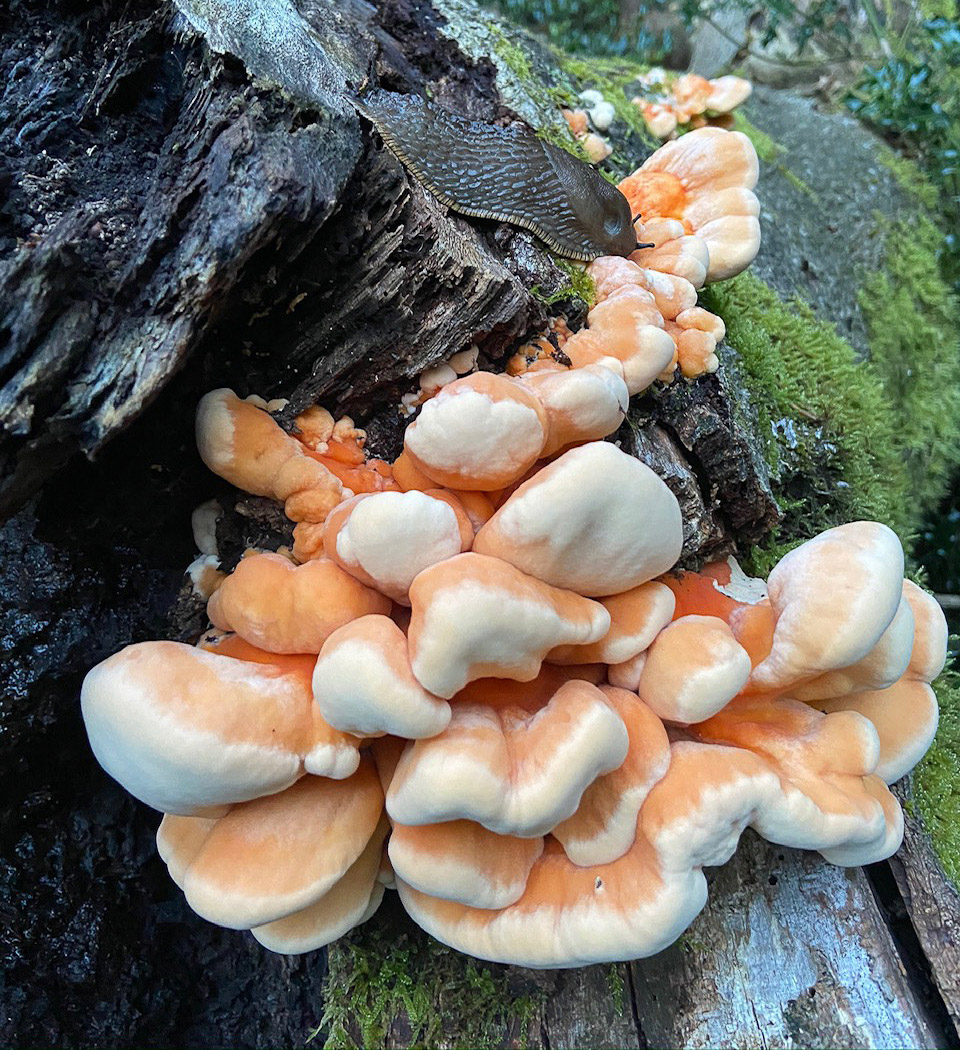 |
September 8th Laetiporus sulphureus (Chicken of the woods)
Paul Goby found this striking specimen growing on a massive Beech log in Naphill Common. This is a common species of bracket often fruiting in summer or early autumn. It can be found on many different deciduous trees, especially Cherry and Oak, and also is quite often on Yew. The second photo is of the same specimen taken by Sarah Ebdon on August 24th when just developing and clearly very tasty!
|
September 7th 2020
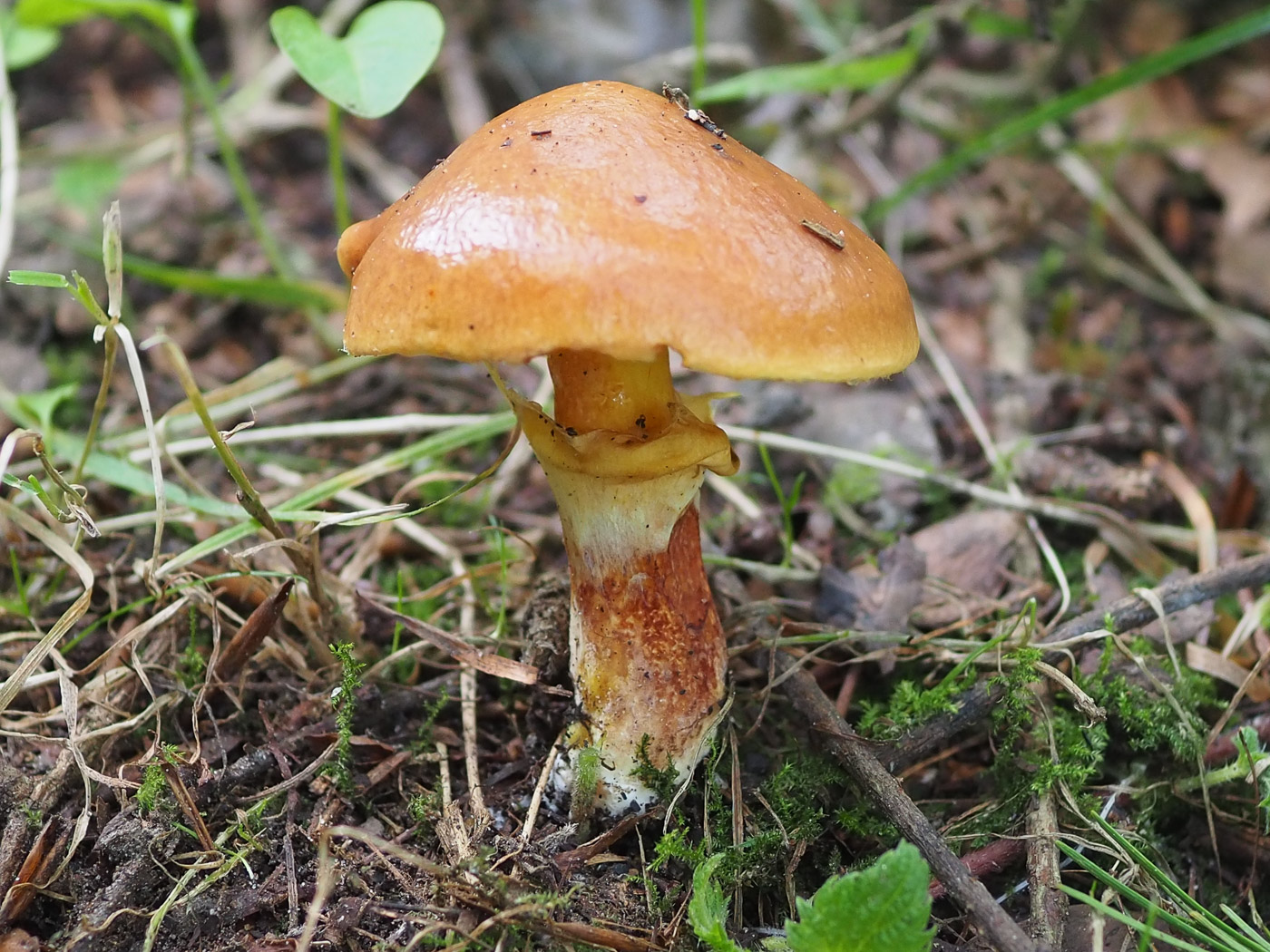 |
September 7th Suillus grevillei (Larch Bolete)
Found by John Catterson in Cowleaze Wood (just over the county border into Oxfordshire!), this early fruiter occurs exclusively under Larch and is very variable in colour, sometimes yellow-brown as here, sometimes a rich reddish dark brown. It has a sticky cap and a persistent ring on the stem. (S. luteus (Slipperly Jack) also has a ring but lacks red in the brown cap and occurs exclusively under Pine.)
|
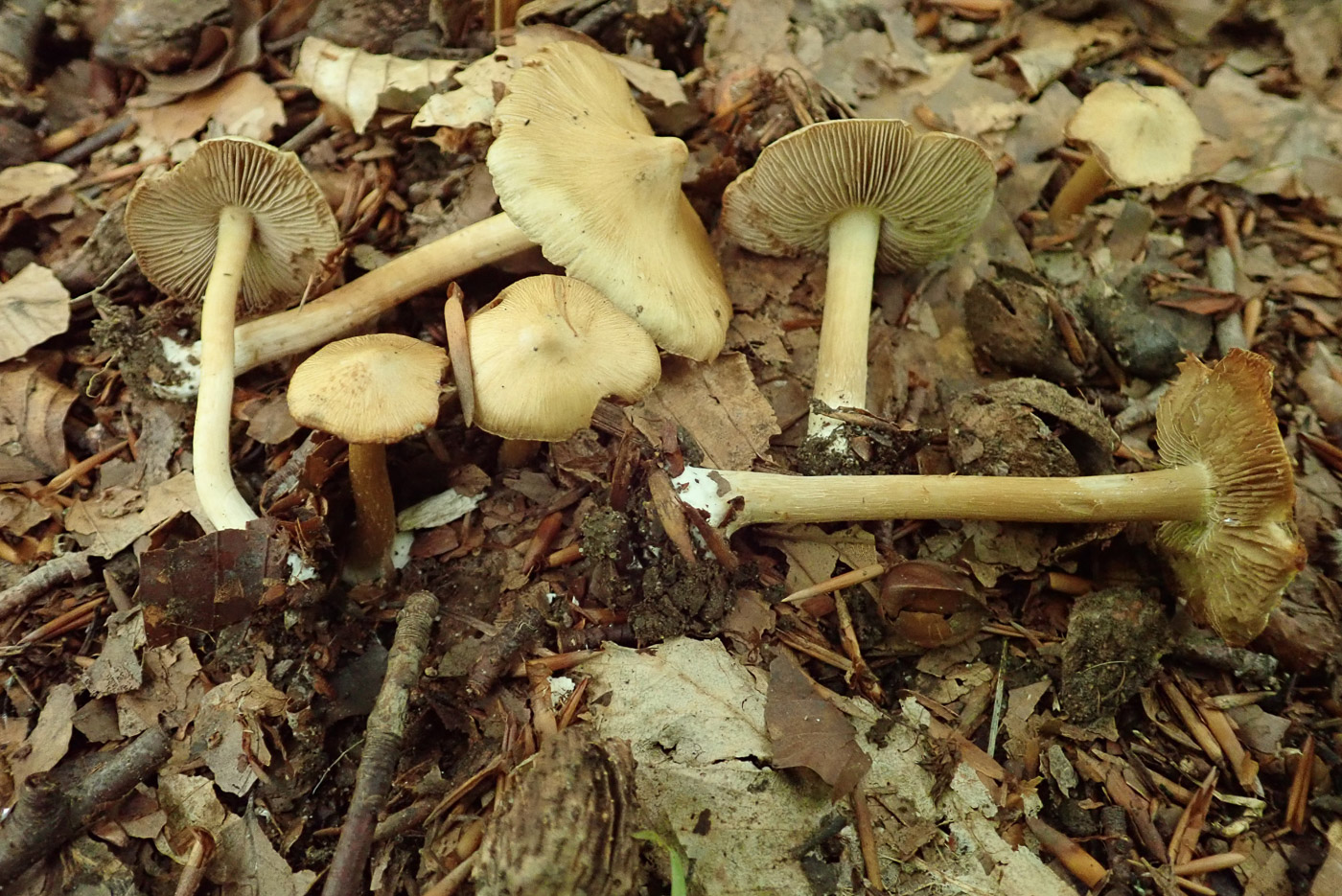 |
September 7th Inocybe cookei (Straw Firecap)
This species, found by Penny Cullington in Mousells Wood under Beech, is a typical member of this large genus, many species of which are not identifiable without recourse to a scope  . Fibrecaps often have brown caps with a finely splitting surface, gills which are pale to snuff brown and strange smells. . Fibrecaps often have brown caps with a finely splitting surface, gills which are pale to snuff brown and strange smells.
|
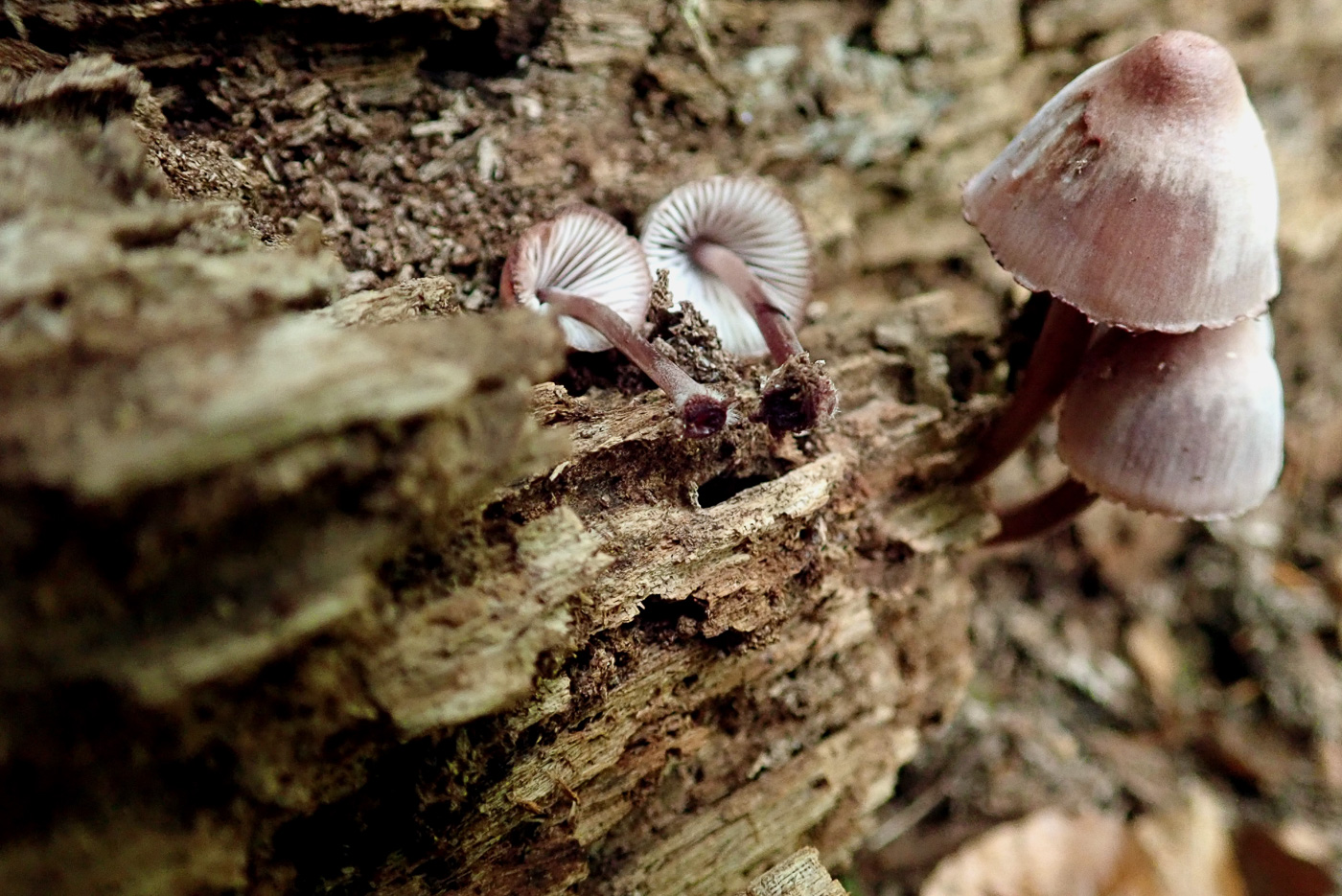 |
September 7th Mycena haematopus (Burgundydrop Bonnet)
Our first Bonnet of the season, this collection was found by Penny Cullington in Mousells Wood growing on a rotting deciduous log. A typical species of Bonnet, it is easily distinguished from others in the field by its pinkish colours and most notably the dark wine red 'juice' which exudes from the stem where damaged (visible in the central fruitbodies). Do not mistake for Mycena crocata, possibly more common in the Chilterns, which has bright saffron orange juice - both species grow on fallen wood.
|
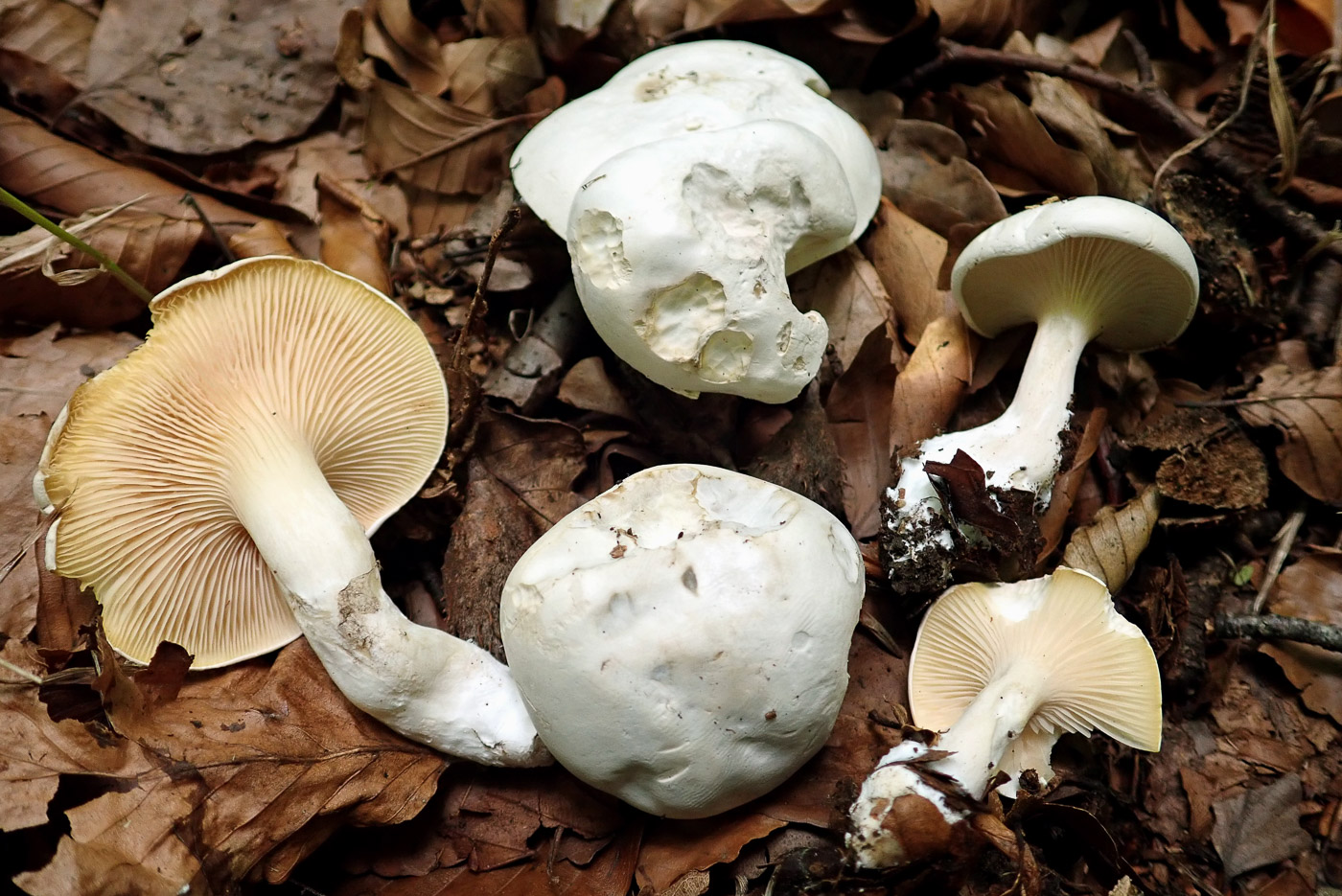 |
September 7th Clitopilus prunulus (The Miller)
A common early season species, this collection was found by Penny Cullington in Mousells Wood fruiting in deciduous litter. It's just as common in grassy path edges and is so-named for its distinctive mealy smell (i.e. of flour). The cap has a feel of kid gloves and the pinkish decurrent gills are also good characters, but though considered a good edible species, do not collect for the pot because it is easily mistaken for several similar species of Clitocybe, one of them dangerously poisonous!
|
September 6th 2020
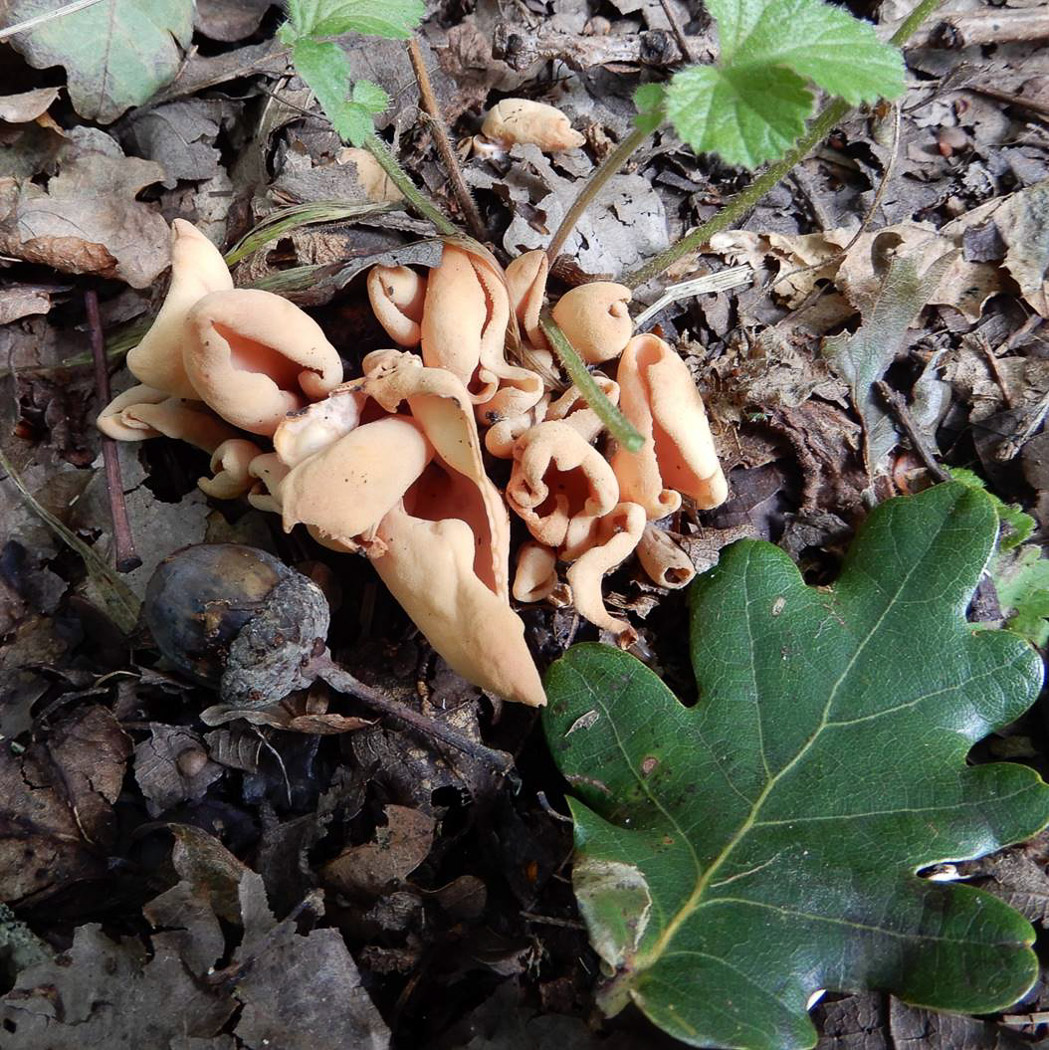
.jpg)
|
September 6th Otidea onotica (Hare's Ear)
Our first Ascomycete photo, this was found by Margaret Bolton at Moorend Common growing in deciduous litter. The genus Otidea can be separated from the similar cup fungus genus Peziza in the field by having a split down one side, i.e not quite forming a complete unbroken cup.
|
.jpg) |
September 6th Hydnum repandum (Wood Hedgehog)
This was found by Margaret Bolton at Moorend Common growing in deciduous litter. Turning this species over once collected and seeing its 'teeth' underneath instead of gills or pores always brings a smile.
|
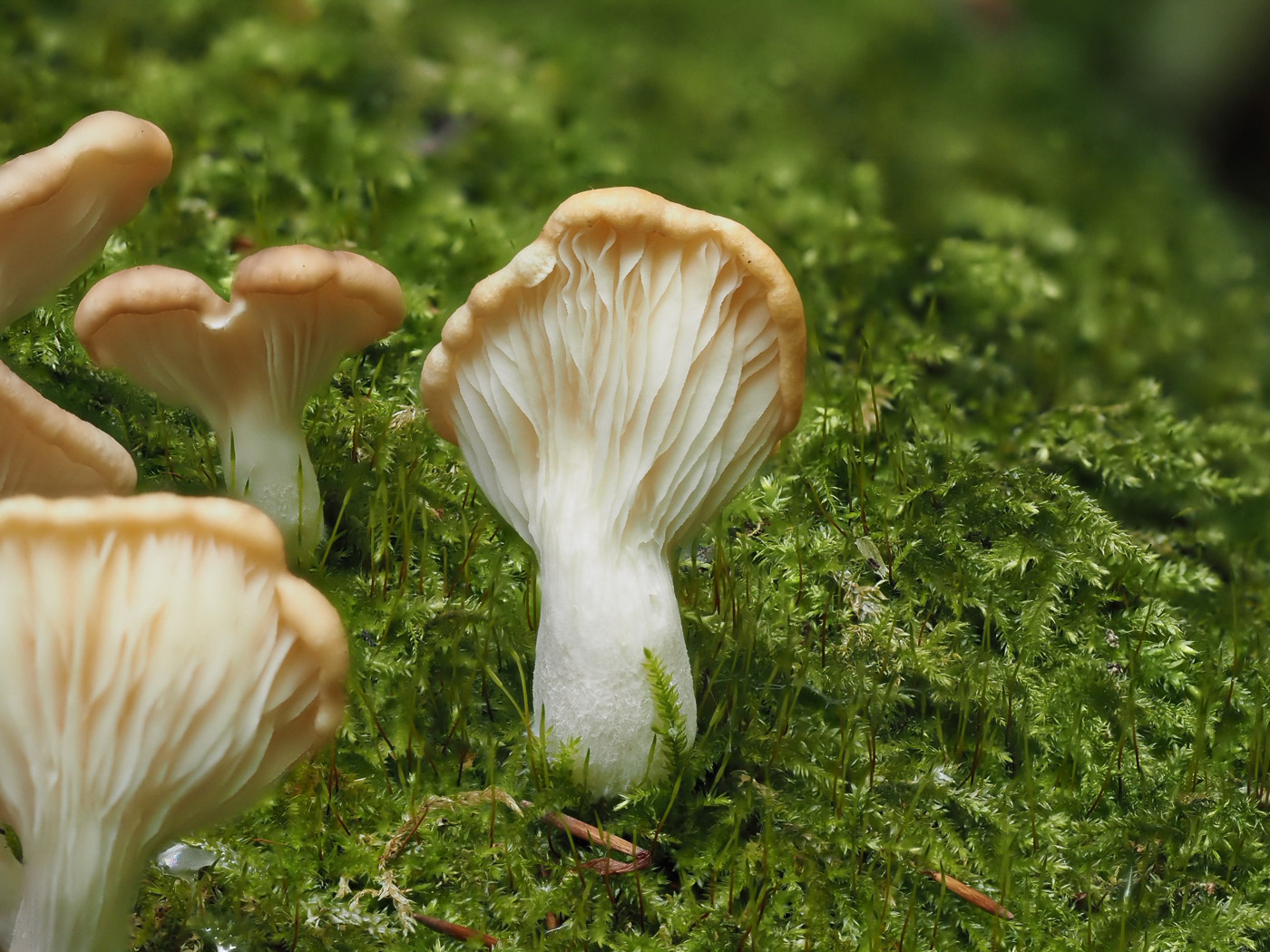 |
September 6th Pleurotus cornucopiae (Branching Oyster)
Less common than the closely related P. ostreatus, this collection was found by Claire Williams growing on a deciduous log in Little Tinkers Wood.
|
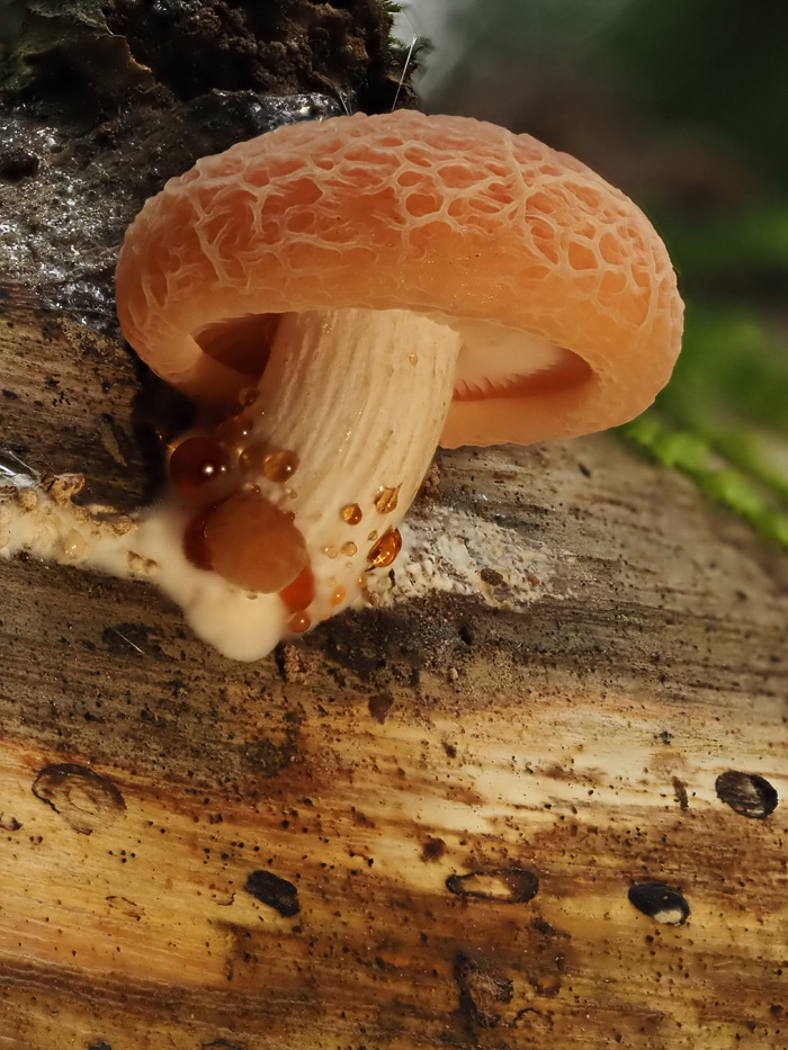
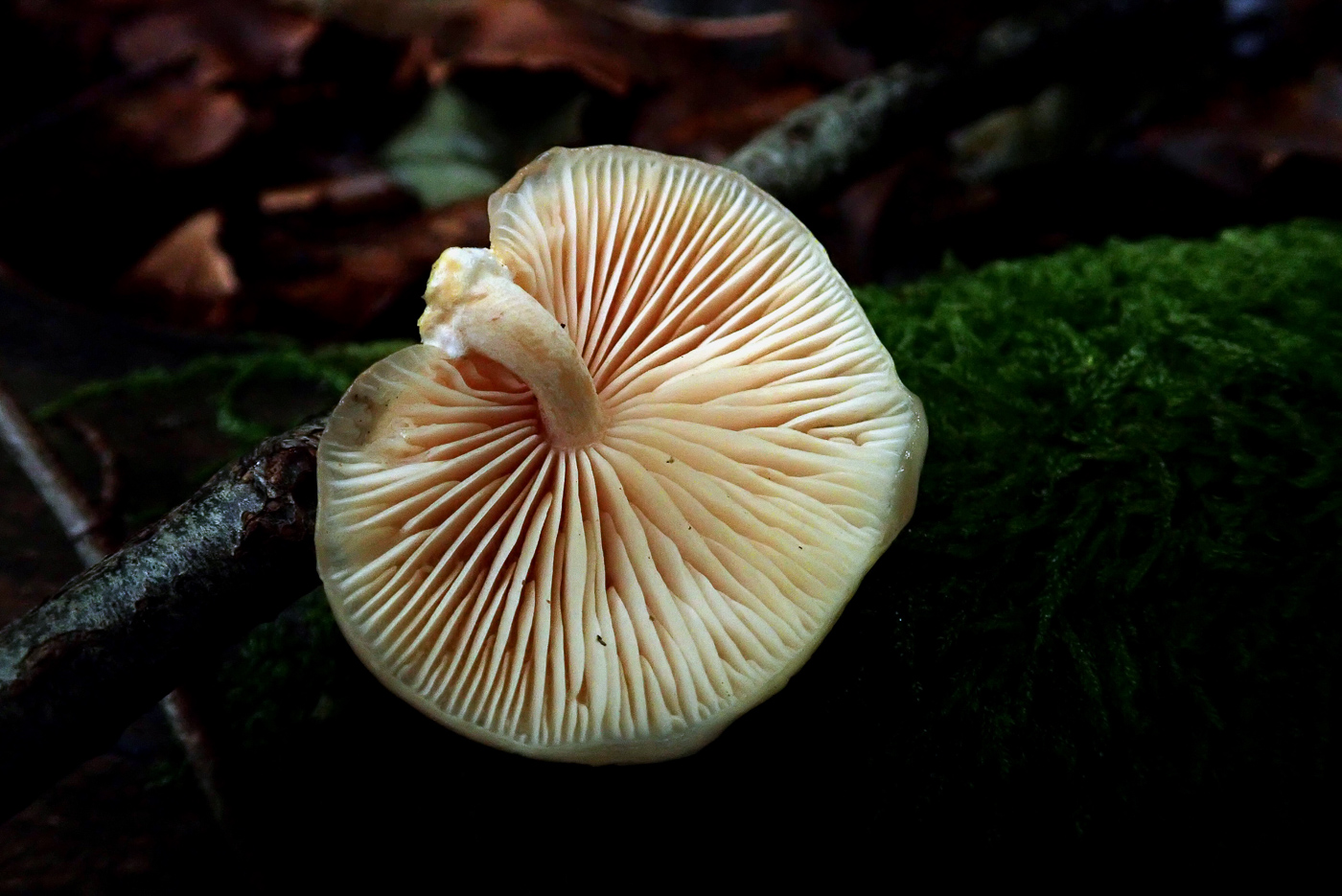 |
September 6th Rhodotus palmatus (Wrinkled Peach)
Claire Williams found this beautiful and quite rare species in Little Tinkers Wood on Wych Elm. Its rarity is due to the demise of its host tree the English Elm though it does occur on Wych Elm and is occasionally reported from other deciduous trees. A further specimen is shown (though much drier reflecting conditions), found at Mousells Wood on Sept 24th by Penny Cullington, also on dead Wych Elm.
|
September 5th 2020
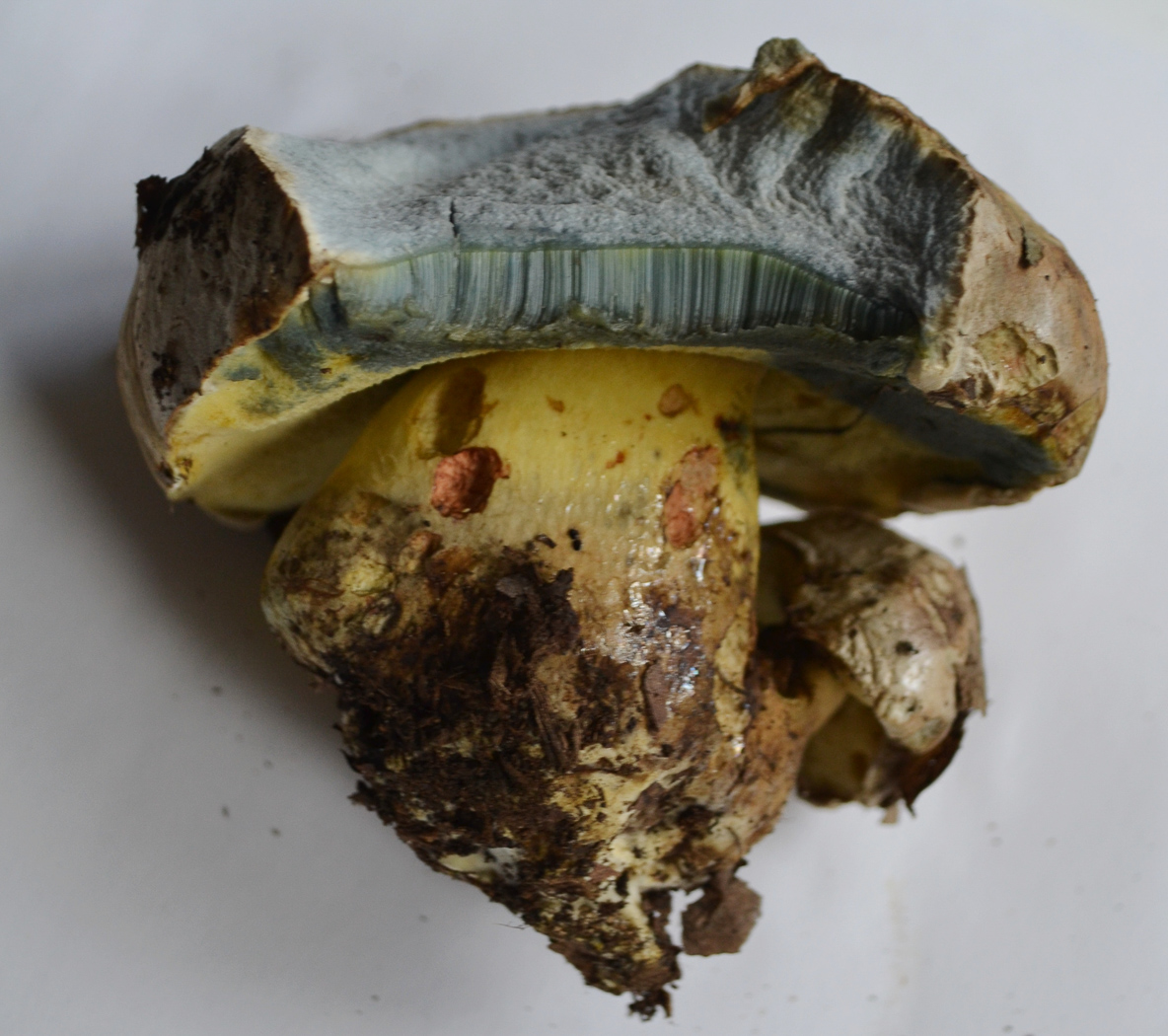 |
September 5th Caloboletus radicans (Rooting Bolete)
Better known as Boletus radicans, this species is having a 'good year' and is widespread at the moment. It was found by Tony Marshall in Prestwood growing under an old hedge and occurs in both woodland and grassland either near deciduous trees or with Rock Rose. The pale ivory cap with firm flesh, yellow crowded pores which rapidly blue when pressed and the pointed stem base are all good characters.
|
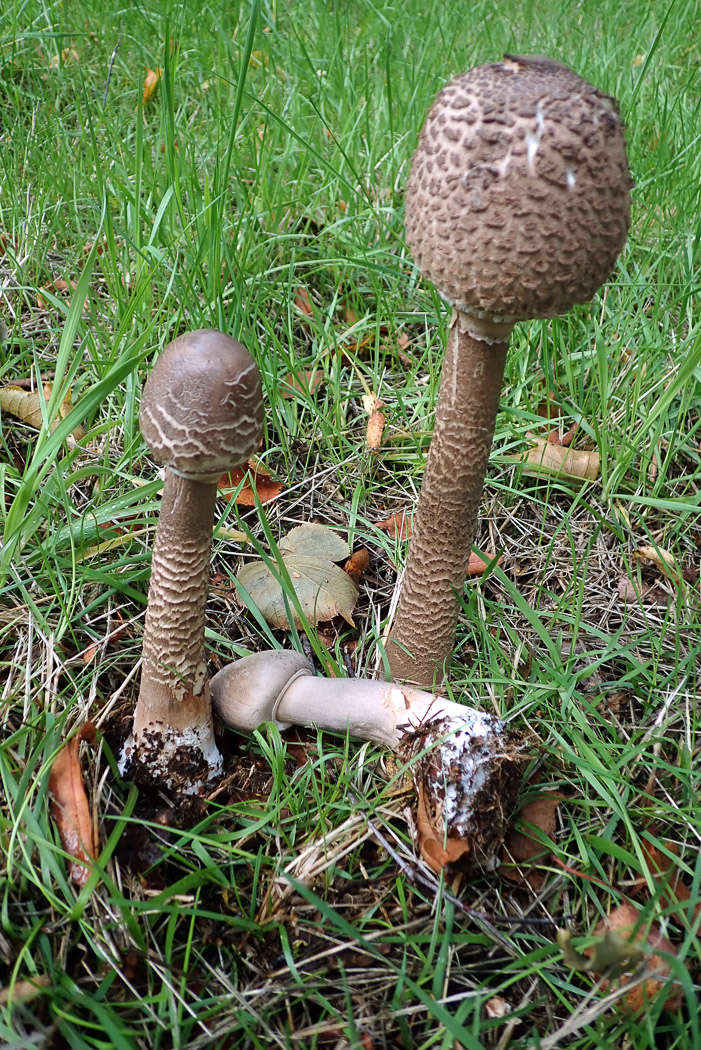 |
September 5th Macrolepiota procera (Parasol)
This collection was found by Penny Cullington at Turville Heath growing under Lime in long grass. Though the white gills are not yet exposed, the three specimens show how the cap starts out life entirely smooth brown but gradually splits to form scales as it expands. The stem surface is also smooth when really young (as seen in the smallest fruitbody) but soon splits and develops the diagnostic 'snakeskin' effect which typifies this species and separates it from the similar Chlorophyllum rhacodes (Shaggy Parasol).
|
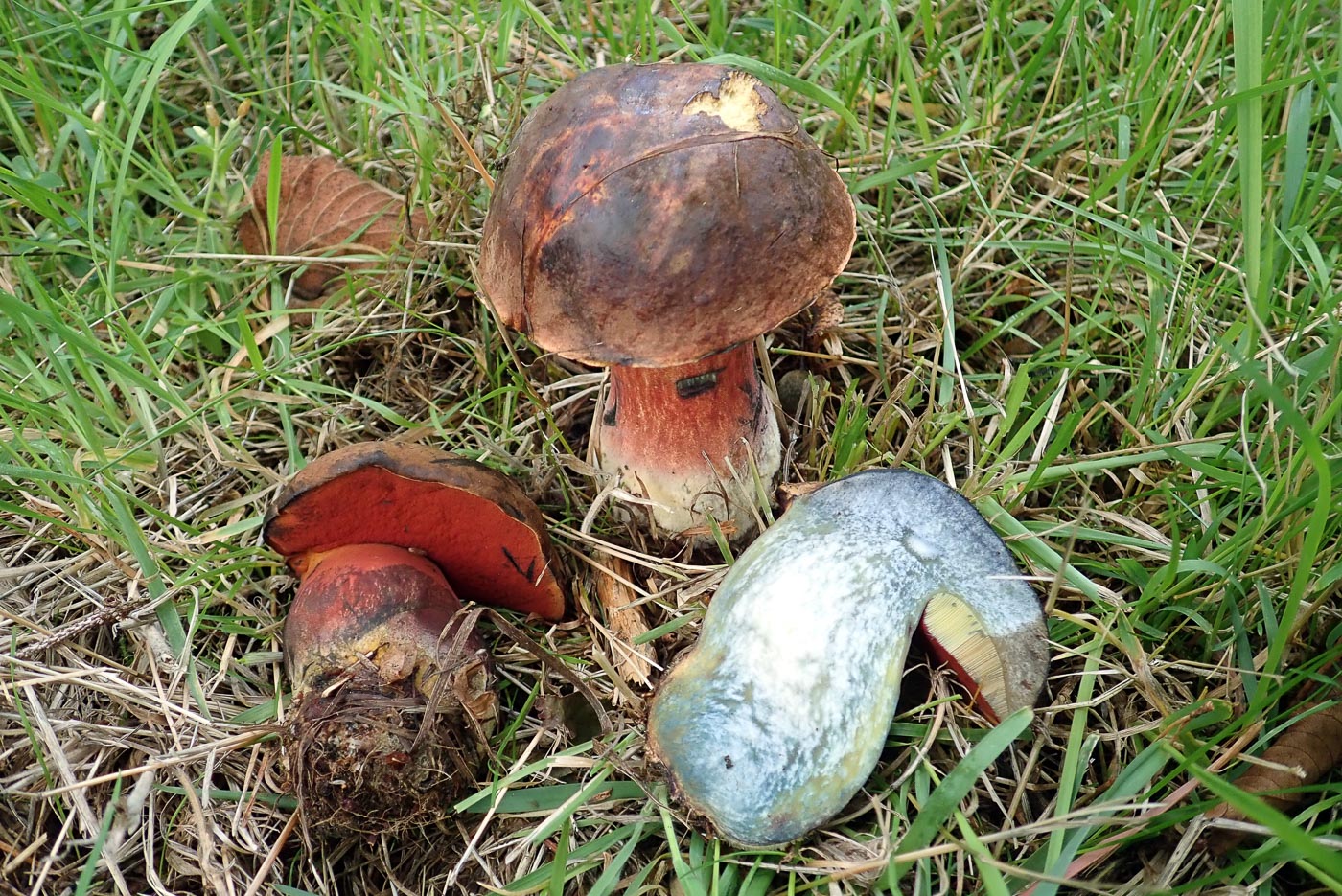 |
September 5th Neoboletus luridiformis (Scarletina Bolete)
More familiar as Boletus erythropus, this impressive fungus is quite common under deciduous trees (here found by Penny Cullington at Turville Heath growing under Lime), The brown cap, bright red pores and stem with flesh that instantly blues when cut make this an easy species to identify.
|
September 4th 2020
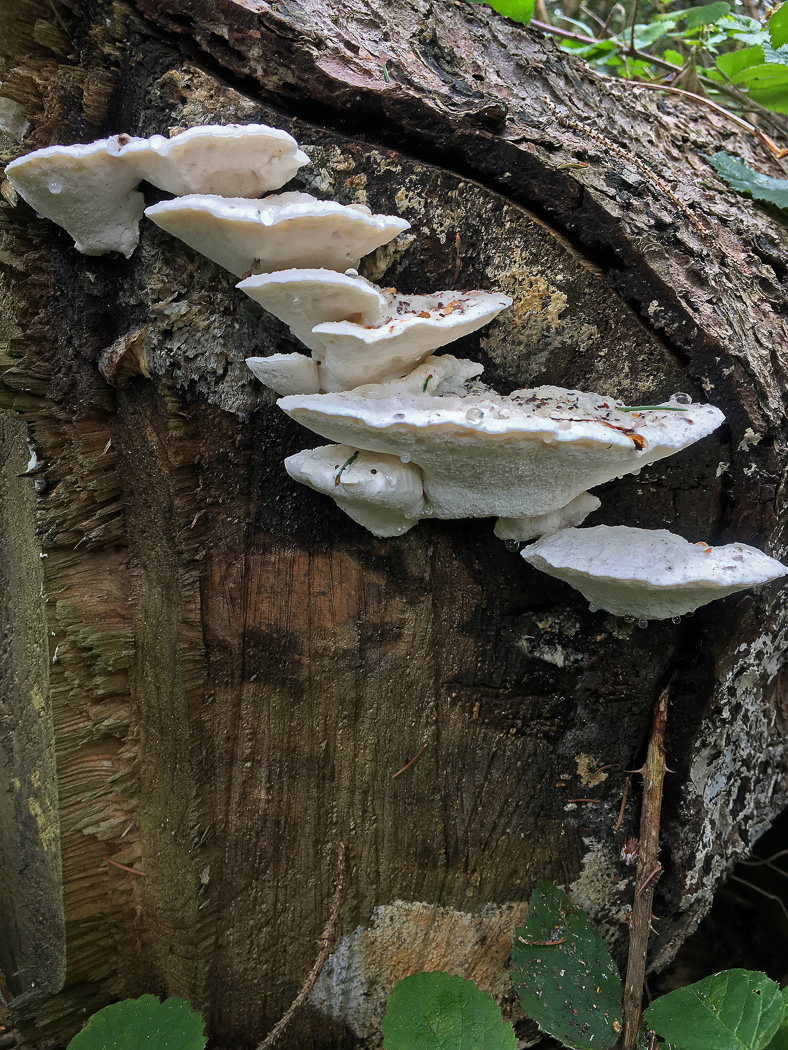
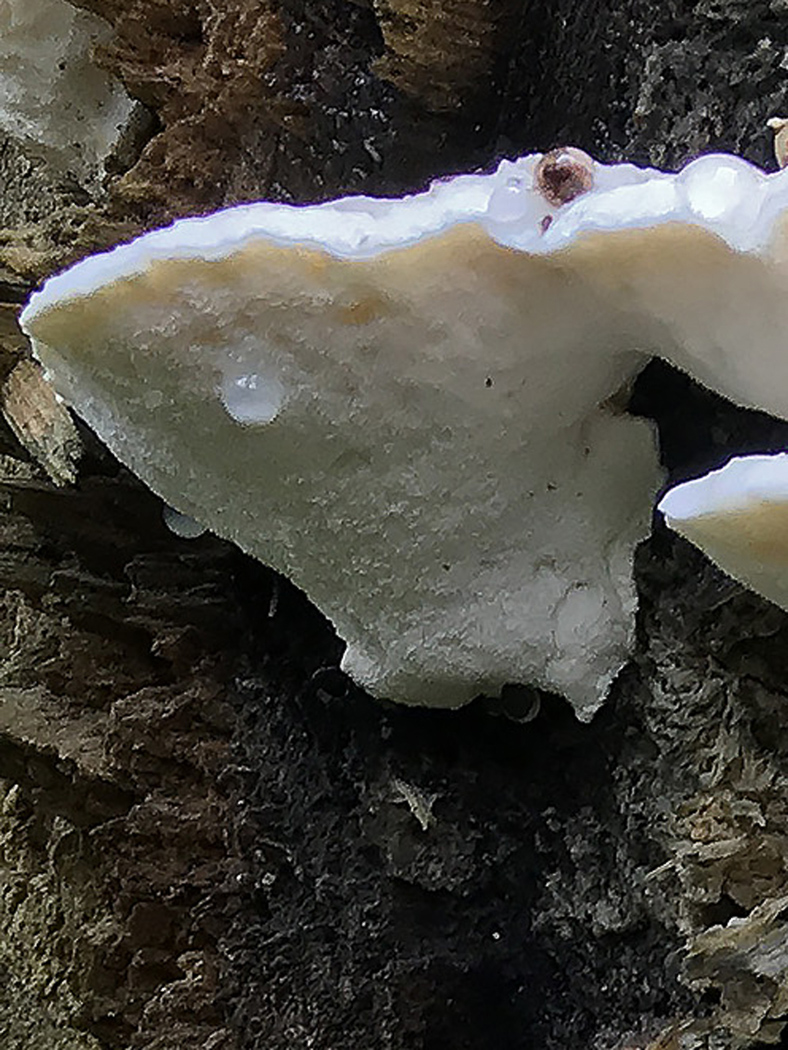 |
September 4th Postia stiptica (Bitter Bracket)
Derek Schafer found this bracket growing on conifer in Stoke Grove Park - a site straddling the Bucks / Beds border though this was just over the border. It can be found on various conifers, usually on fallen wood and is extremely bitter to taste - hence its common name. There are other very similar species with which this can be confused, especially if the fallen wood cannot be identified safely (often the case). If in doubt, take a nibble then quickly spit it out! If bitter you have this species but if not then the wood is probably deciduous in which case you have another species!
|
 (DSCN4638 (2).jpg) |
September 4th Geastrum triplex (Collared Earthstar)
Margaret Bolton noticed this fungus in a roadside verge near Frieth. A woodland species, this is one of the larger Earthstars and also probably the commonest. This particular specimen has a distinct collar but that feature is not always obvious or even present which can confuse identification.
|
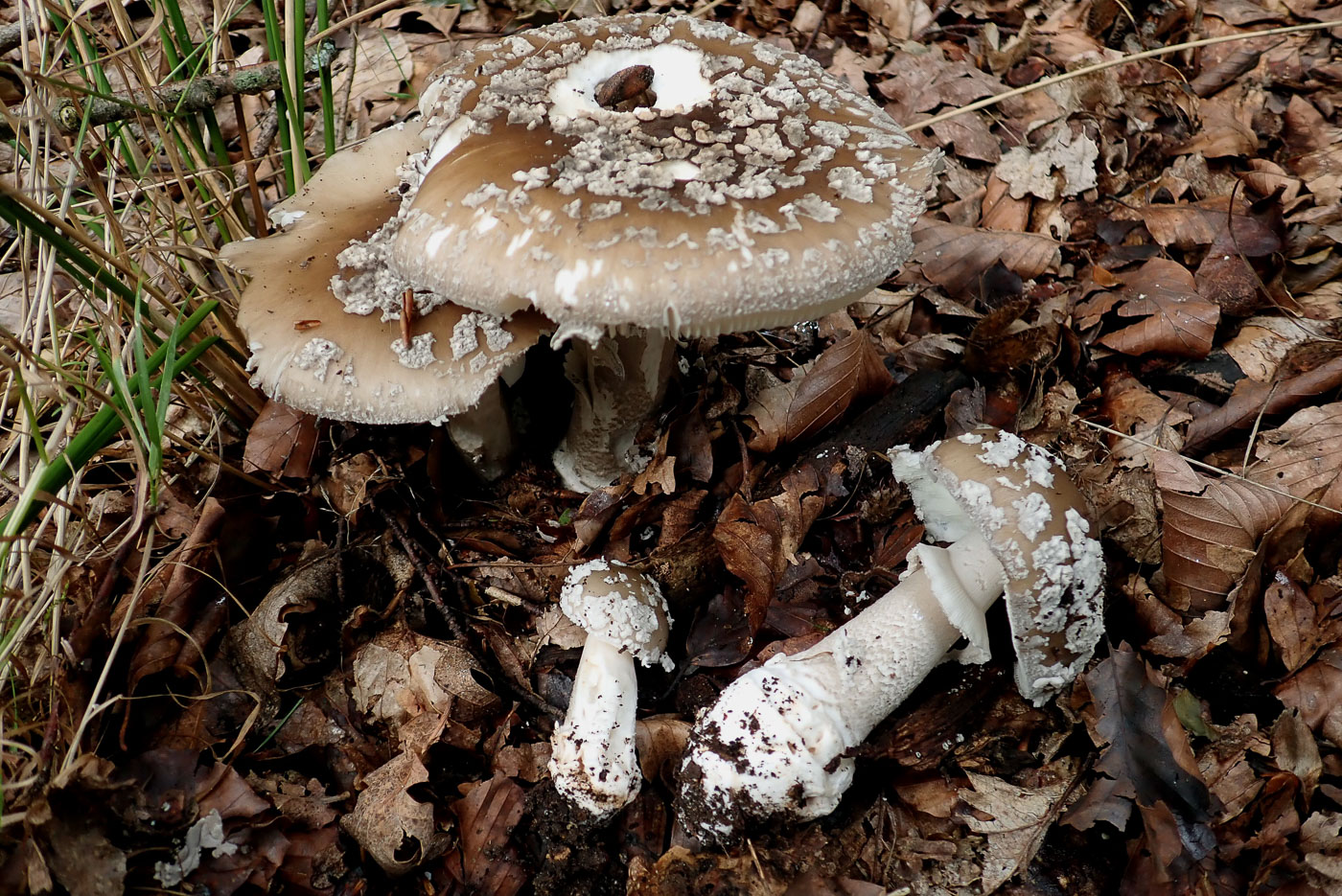
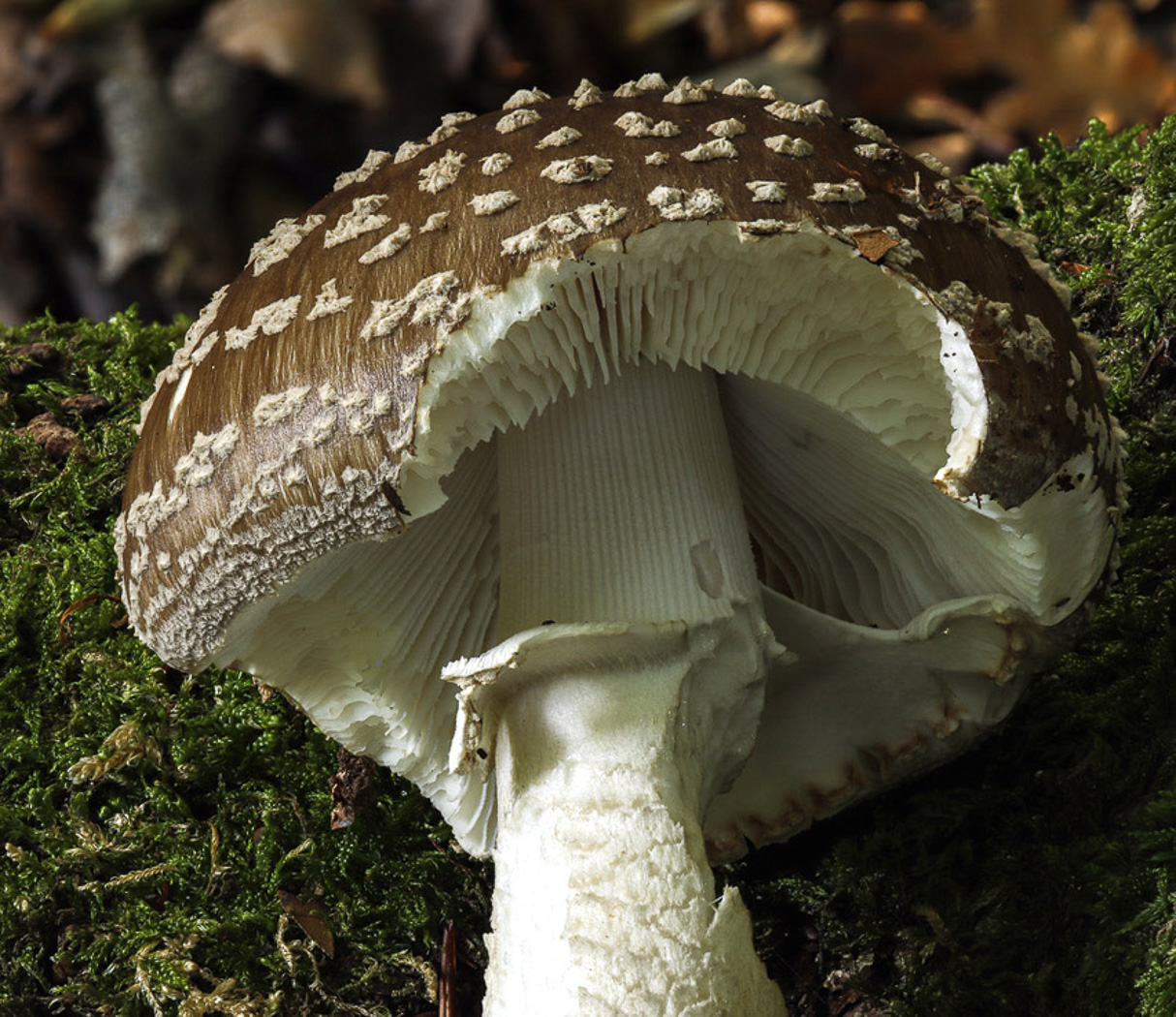 |
September 4th Amanita excelsa (Grey Spotted Amanita)
This was found by Penny Cullington in Bradenham Woods under Oak and Beech. Not quite as common as the similar A. rubescens, also sometimes mistaken for the very poisonous A. pantherina, note the grey rather irregular specks of cap veil (which rub off as in all members of the genus) and lack of pink stains. The first character separates it from A. pantherina which has really white and regular veil patches, the second separates it from A. rubescens. Another useful confirmation that you have A. excelsa and not A. pantherina is well illustrated in the second photo (from Naphill Common Sept 20, Paul Goby): note the clear striations on and above the ring on the stem. These occur in both A. excelsa and A. rubescens but not in A. pantherina.
|
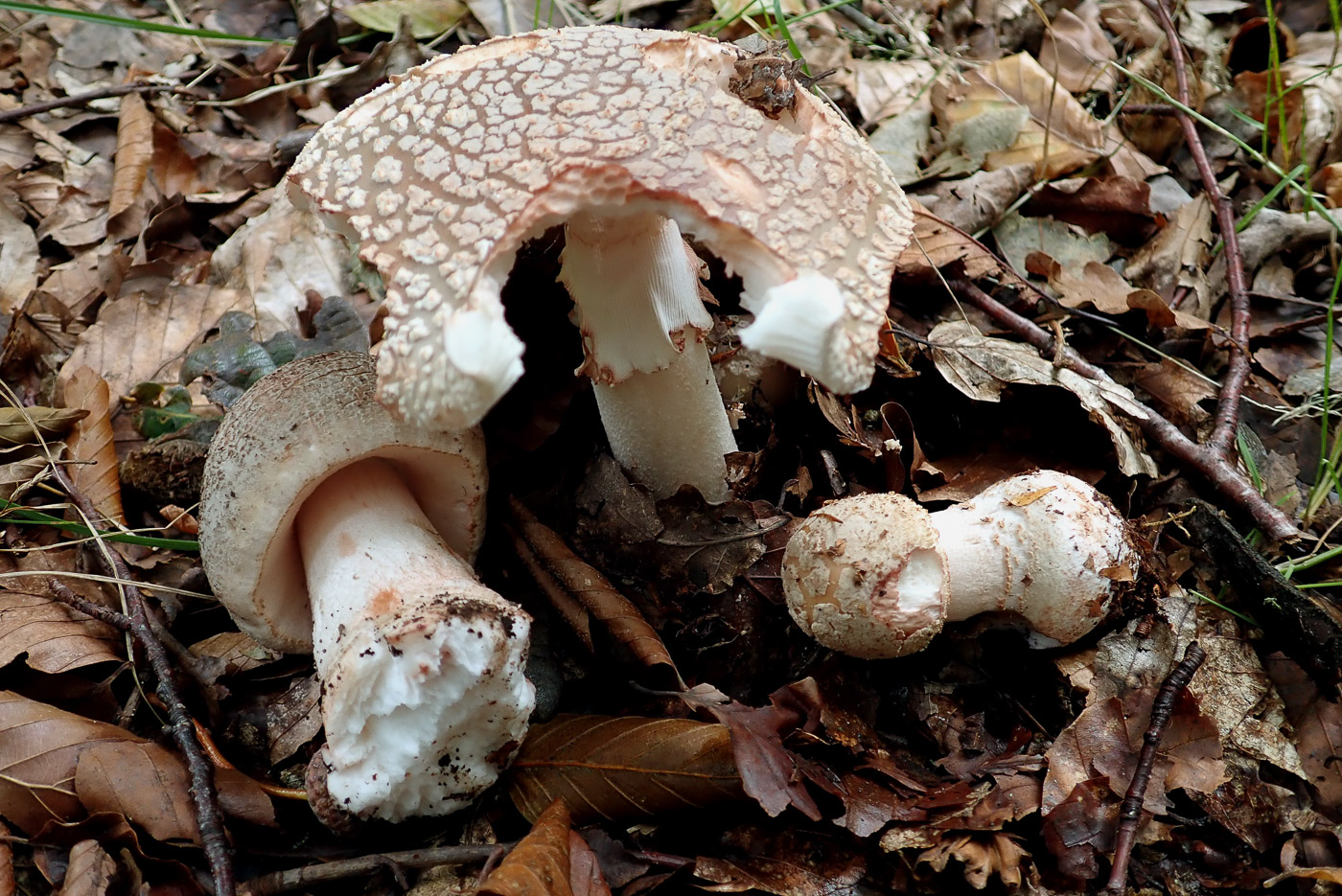 |
September 4th Amanita rubescens (Blusher)
One of the earliest fruiting and most common Amanitas, this was found in Bradenham Woods by Penny Cullington under Oak and Beech. Note the typical features of the genus together with the pink stains of this species which develop where damaged. Compare also with the similar A. excelsa which always lacks pink stains.
|
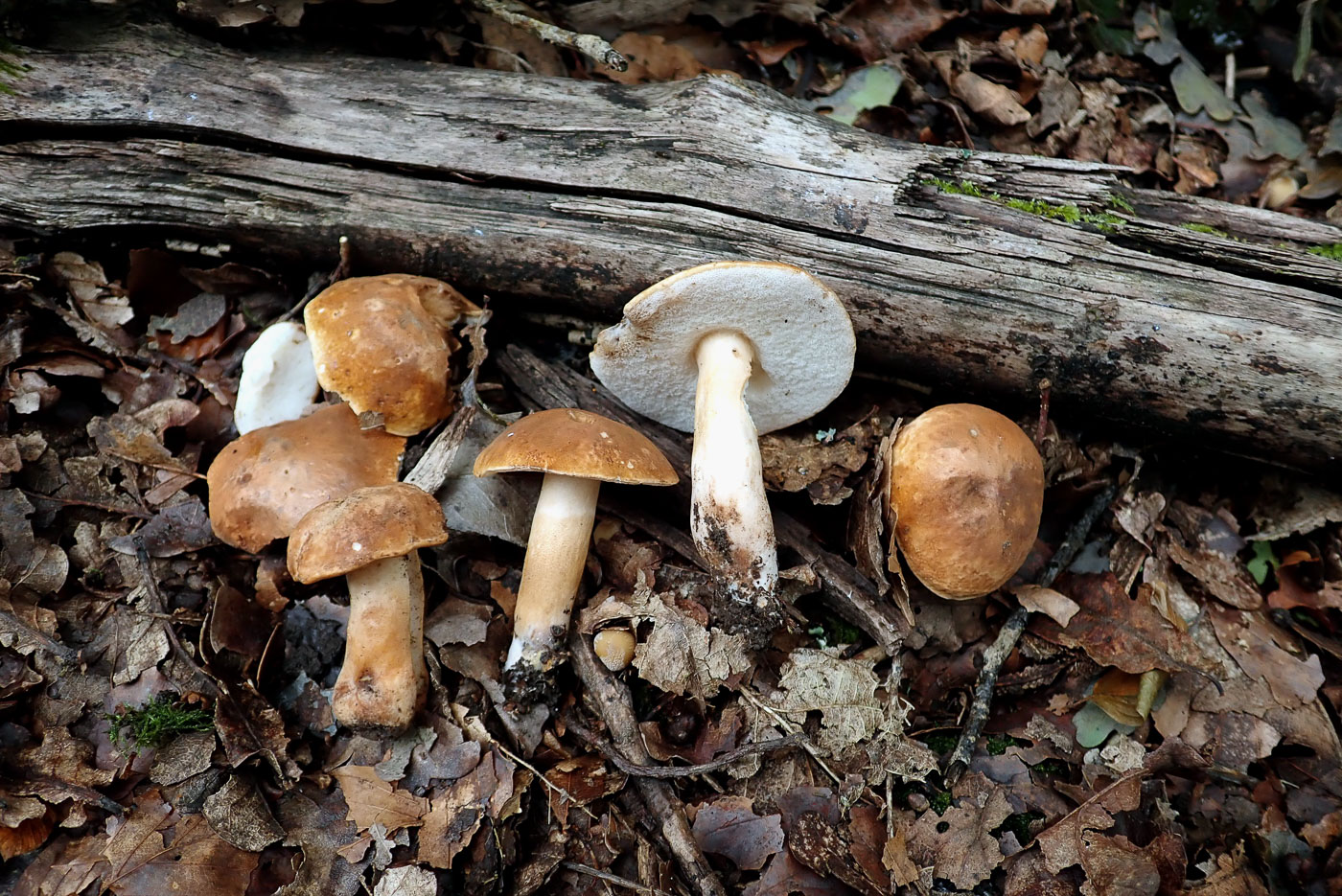 |
September 4th Gyroporus castaneus (Chestnut Bolete)
An unusual bolete found by Penny Cullington at Naphill Common growing under Oak. The bright brown cap and stem with white pores which don’t blue on bruising are good field characters. The only previous record for this site was back in 2001.
|
September 2nd 2020
 |
September 2nd Suillellus luridus (Lurid Bolete)
More familiar as Boletus luridus, this species is appearing in remarkably large numbers at the moment. It is normally a woodland species but here was fruiting with Helianthemum (Rock Rose) at Coombe Hill, found by Penny Cullington. It can be seen fruiting in hundreds at present with Rock Rose at both Watlington Hill and Beacon Hill, Aston Rowant Nature Reserve, so well worth looking out for in this specialised habitat now.
|
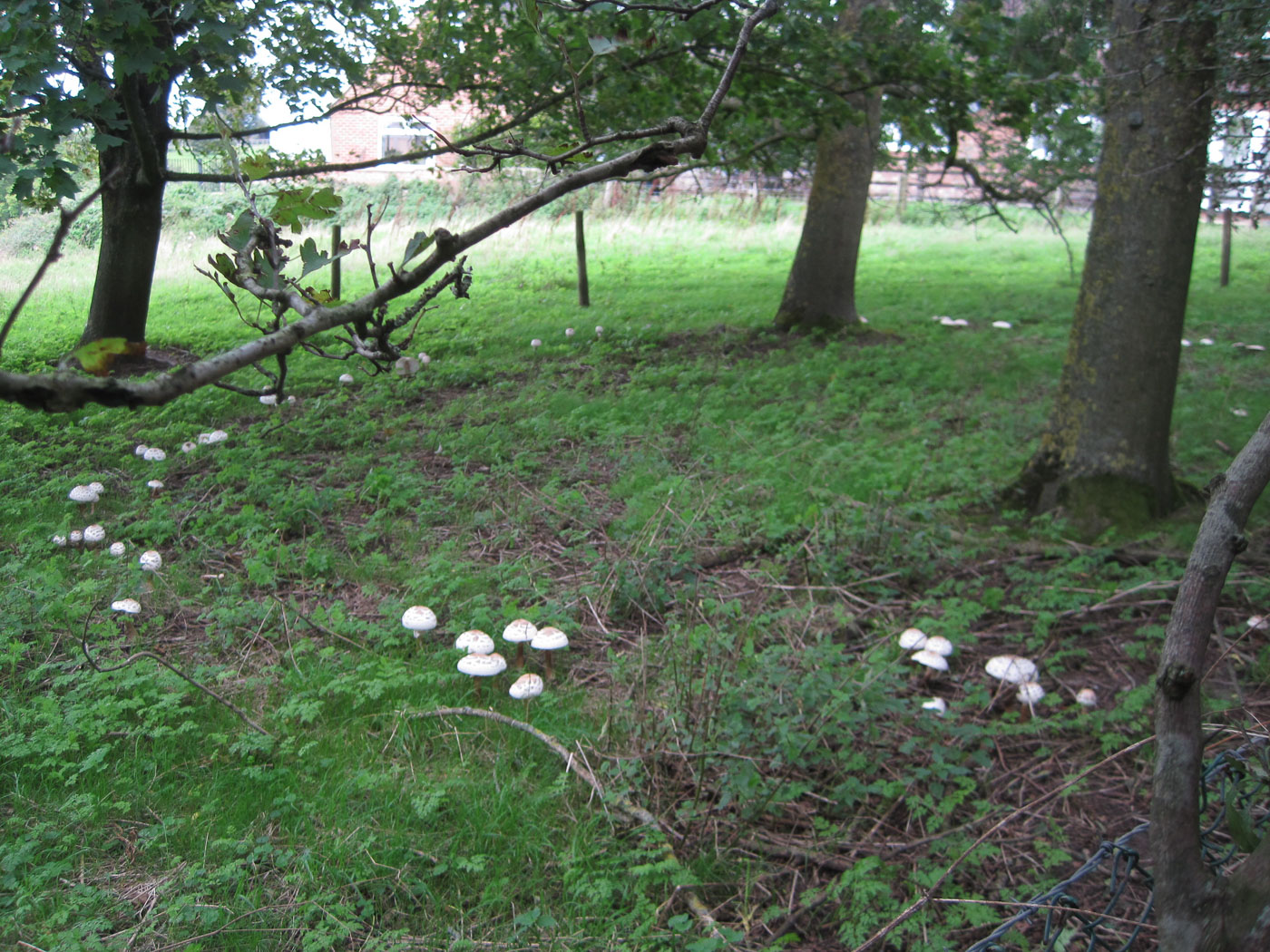 |
September 2nd Chlorophyllum rhacodes (Shaggy Parasol)
This complete ring of Parasols was found on the Walks at Brill Common by Joanna Dodsworth. To separate this common species from the very similar Macrolepiota procera (Parasol) scratch the stem or break the cap flesh and watch for the orange flush which occurs in a few seconds especially in fresh specimens but is absent from M. procera.
|
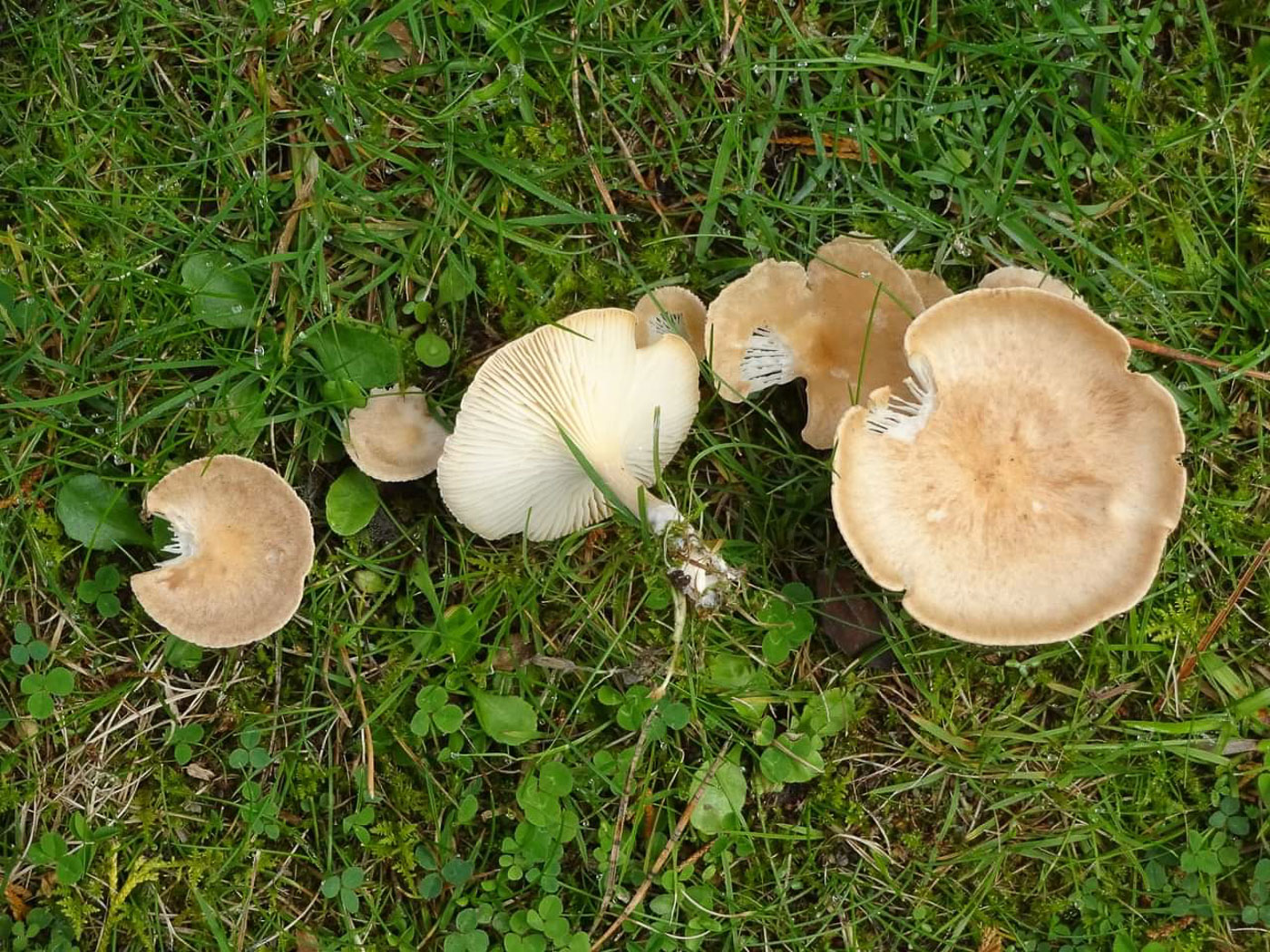 |
September 2nd Clitocybe gibba (Common Funnel)
Found growing in grass in Penn Street churchyard by Nick Standing. This is a species which often fruits early in the season and occurs in both woodland and grassland.
|
September 1st 2020
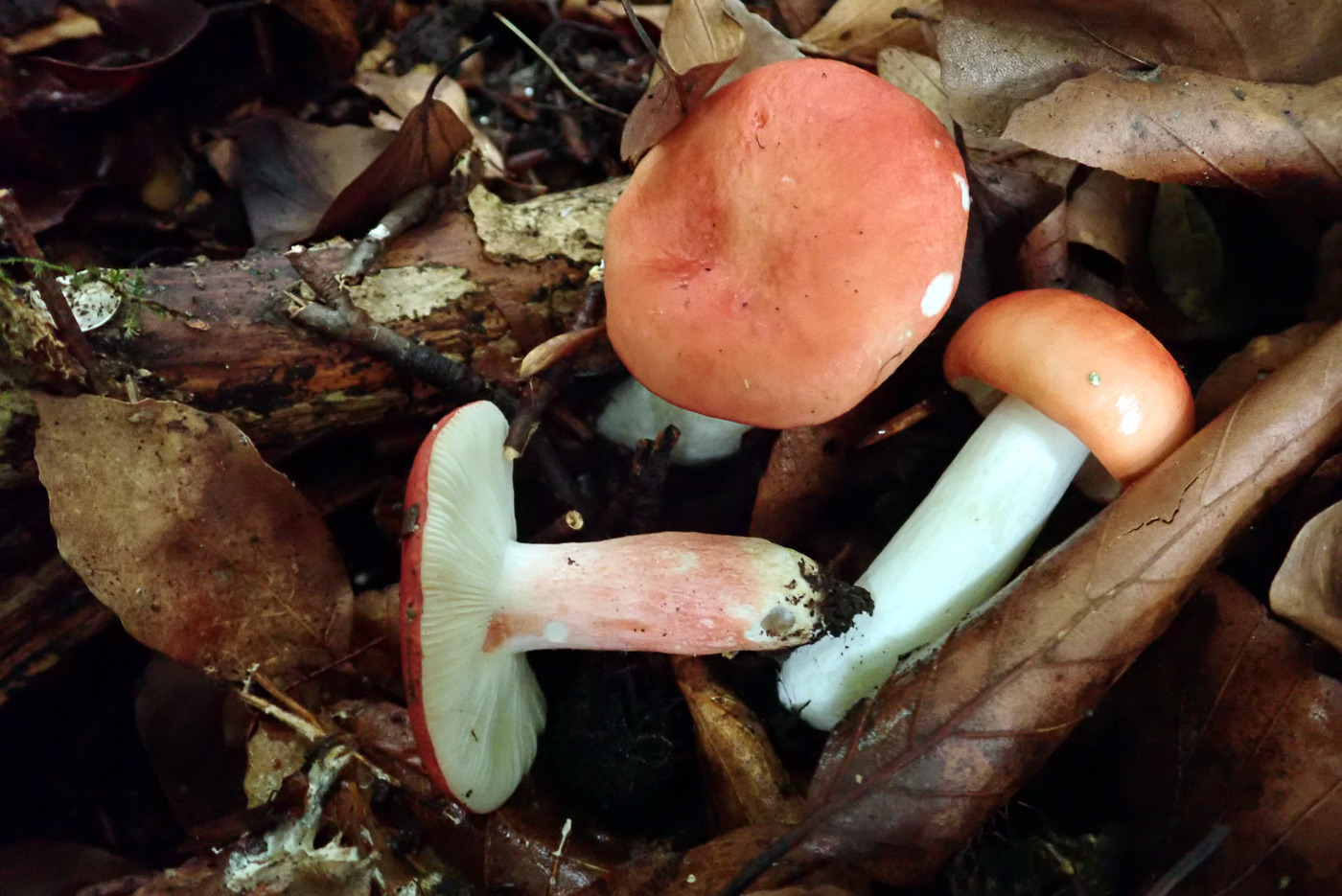 |
September 1st Russula rosea (Rosy Brittlegill)
One of many red capped members of this genus, this species (found by Penny Cullington under Oak and Beech at Wotton Park Estate) often has a red stem as seen on one specimen here, also has much firmer flesh than other similar species and a cap cuticle which hardly peels at all
|
August 31st 2020
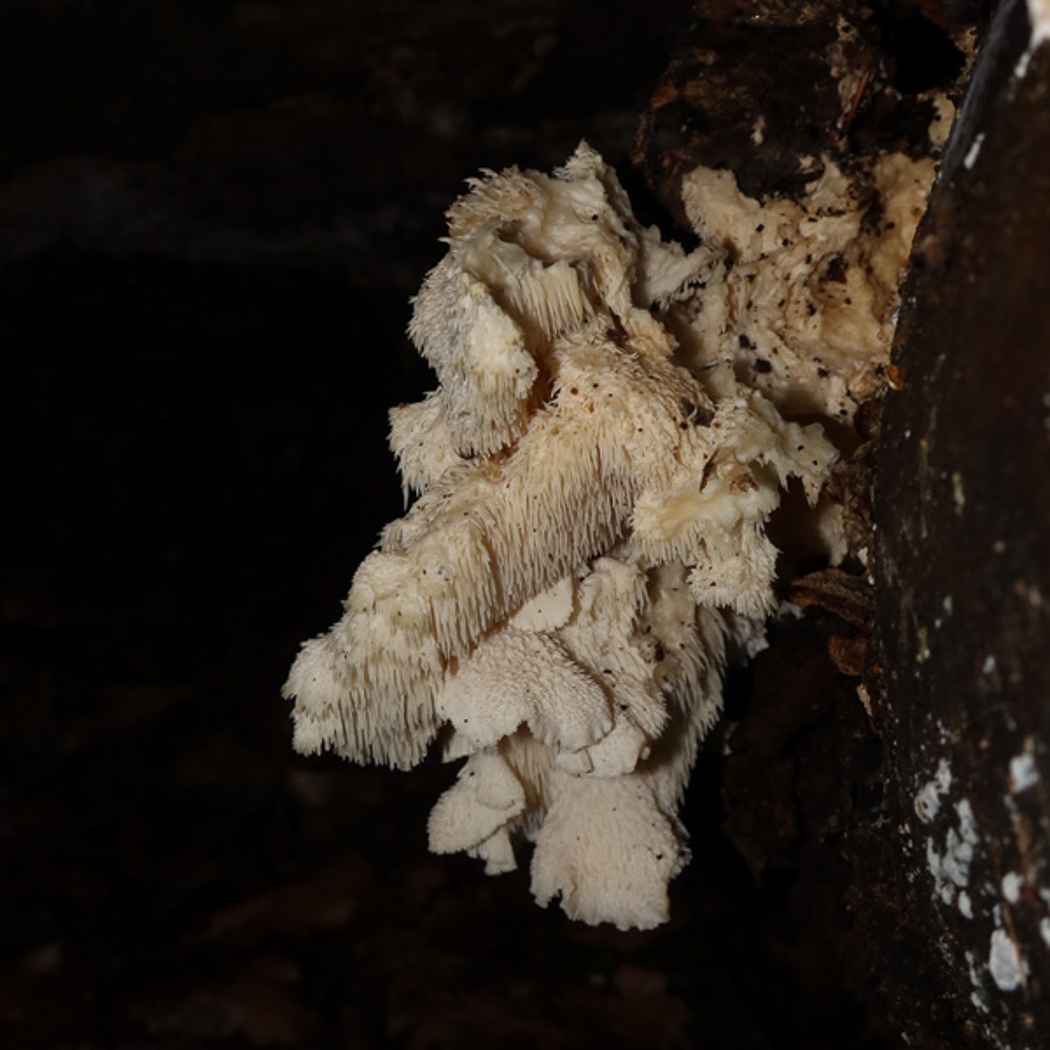
|
August 31st Hericium cirrhatum (Tiered Tooth)
Claire Williams found this rare and beautiful fungus fruiting on the same fallen Beech trunk in Naphill Common as it was last year when it was recorded here for the first time. Not quite as rare as the similar H. erinaceus (which also occurs on this site) it is notable for having fine tubes (known as teeth) underneath in place of gills or pores.
|
August 28th 2020
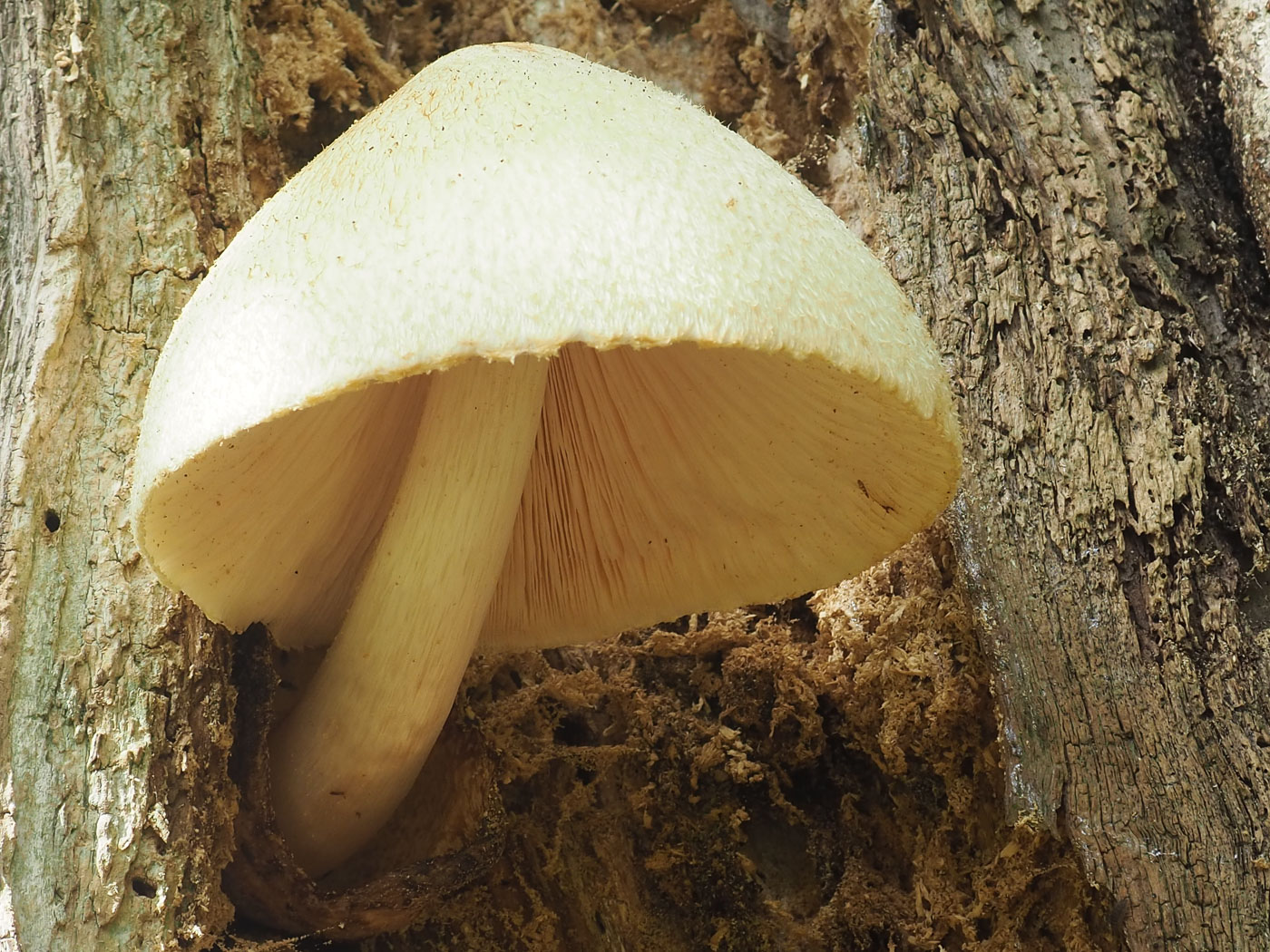 |
August 28th Volvariella bombycina (Silky Rosegill)
John Catterson found this quite rare and beautiful fungus growing on Horse Chestnut in Hughenden Park, Wycombe. Similar to the genus Pluteus, which also occurs on wood and has pink free gills, the genus Volvariella has a 'volva' or sack similar to an Amanita at the stem base (not visible here being submerged within the wood).
|
August 23rd 2020
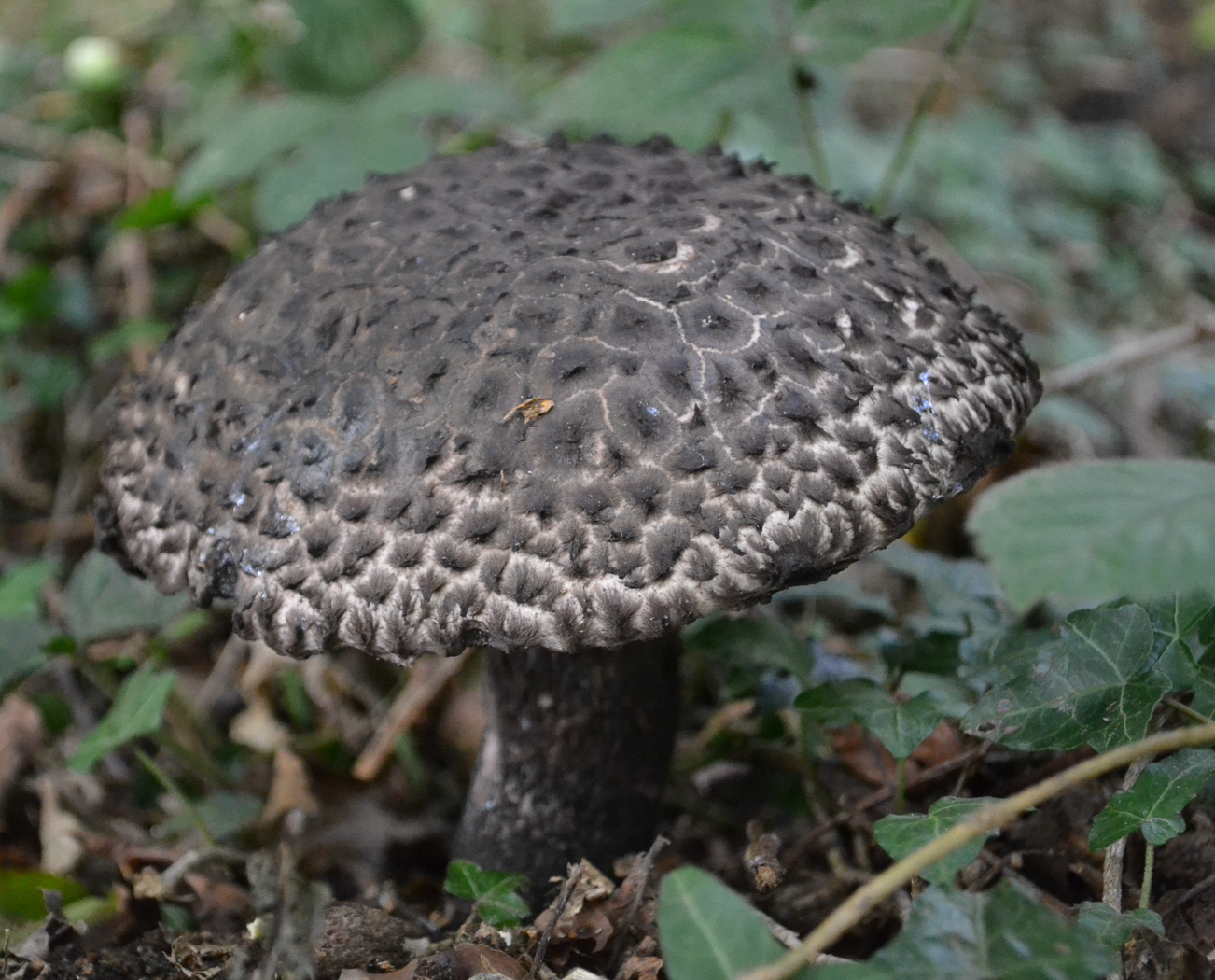
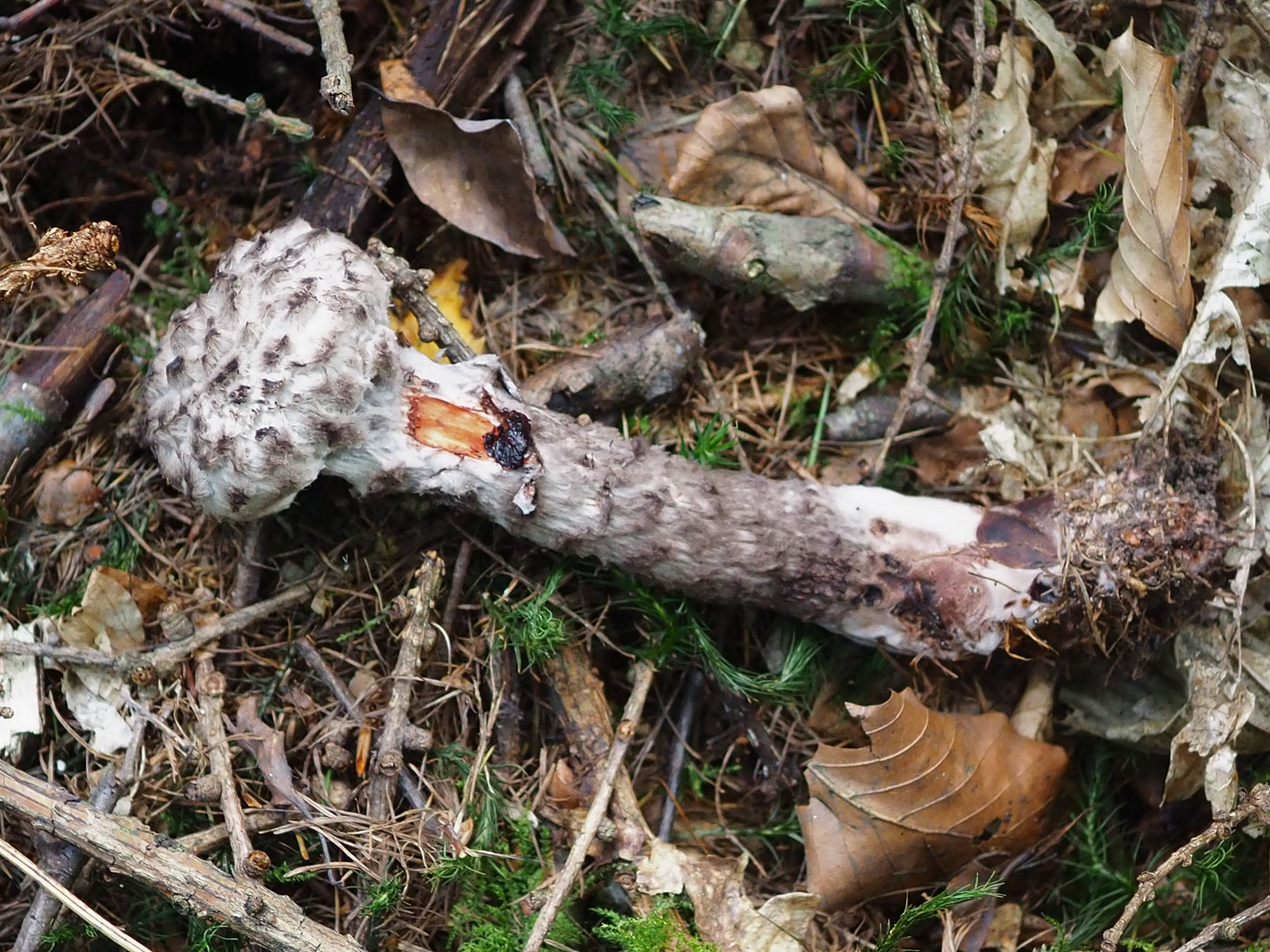 |
August 23rd Strobilomyces strobilaceus (Old man of the woods)
This quite rare and strange-looking bolete was found by Tim Harrison in Hobbshill Wood near Great Missenden under Beech (photograph Tony Marshall). Apparently not recorded in this specific area for 19 years or so, it has been reported from other woodlands this autumn and is definitely one to look out for. The second photo of young material was found under mixed trees including Larch and Birch at Penn Wood on September 16th by Sarah Ebdon (photo John Catterson). It shows one of the unusual features of the species: when scratched the flesh quickly stains red then black.
|
August 22nd 2020
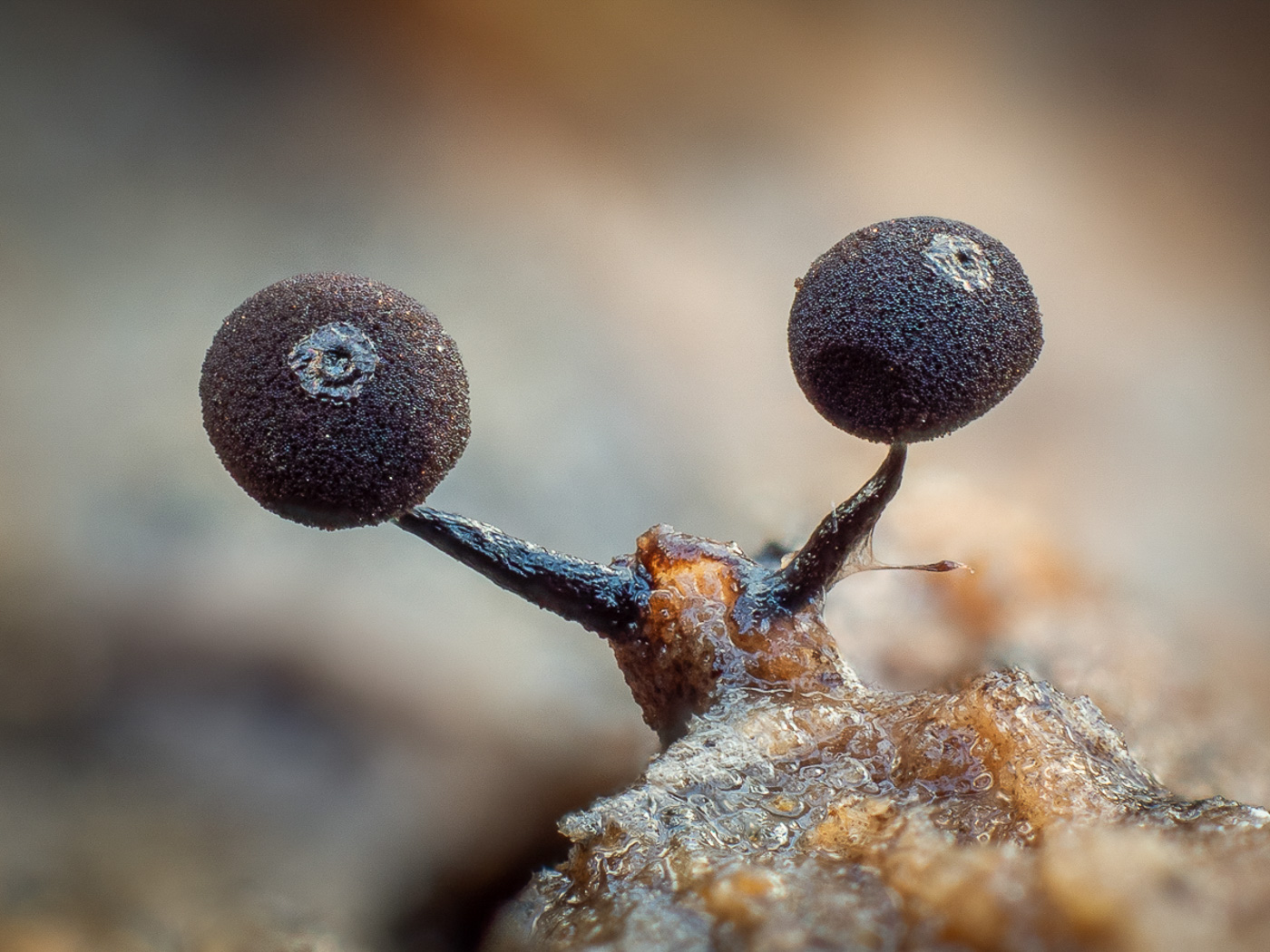 |
Enerthenema papillatum (a slime mould with no common name)
In Penn Wood Barry Webb found these tiny specimens growing on rotting fallen Beech. This is the only species of the genus found in the UK and we have just three previous records from the north of the county, the most recent of which was in 2001.
|
![]() Only entries marked with this symbol have been microscopically examined. There is no guarantee on identifications made of entries lacking this symbol though all photos are checked and selected by Penny to the best of her ability. Basic accompanying notes are also Penny's.
Only entries marked with this symbol have been microscopically examined. There is no guarantee on identifications made of entries lacking this symbol though all photos are checked and selected by Penny to the best of her ability. Basic accompanying notes are also Penny's. ![]() Entries marked with this symbol have been confirmed or identified using DNA sequencing.
Entries marked with this symbol have been confirmed or identified using DNA sequencing. 




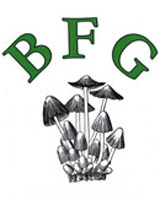



























































































































































































































































































































































































































































































































































































































































































































































































































































































































































































































.jpg)
.jpg)








 (DSCN4638 (2).jpg)












